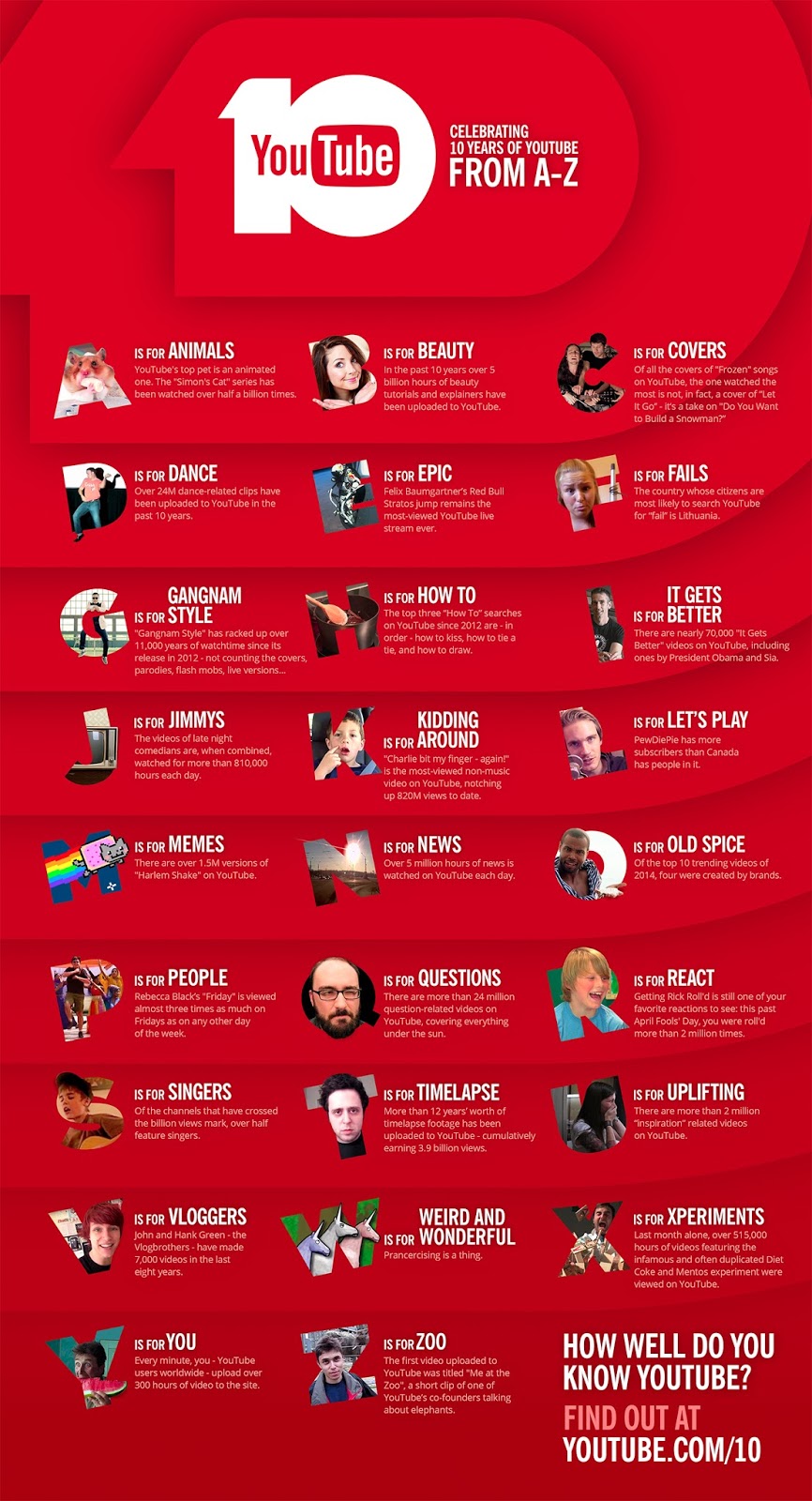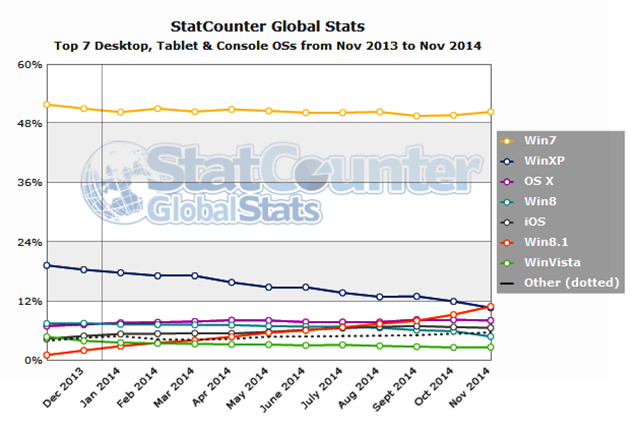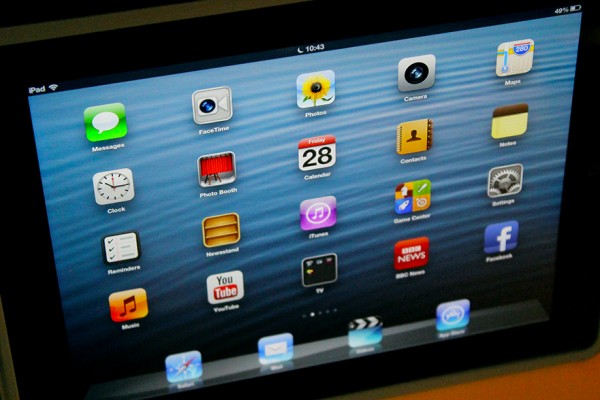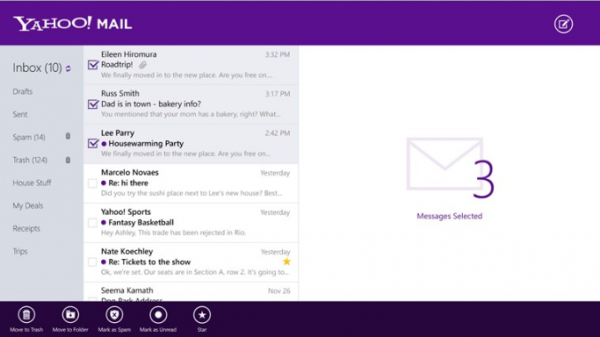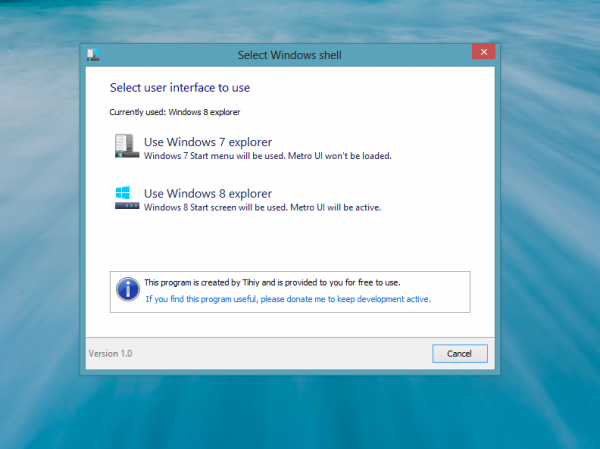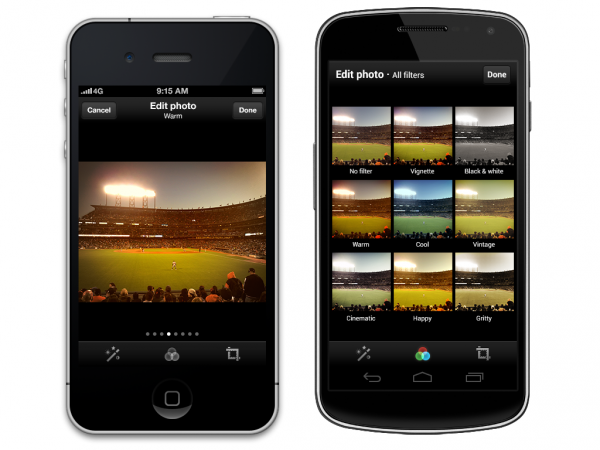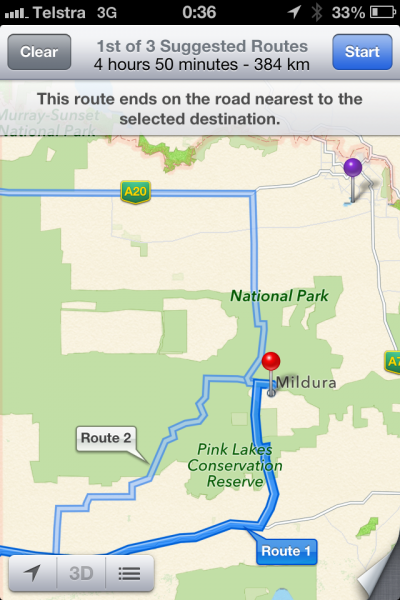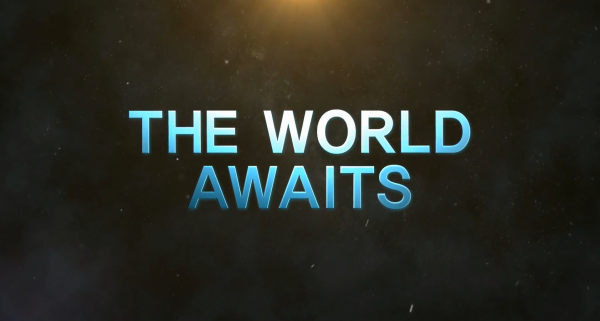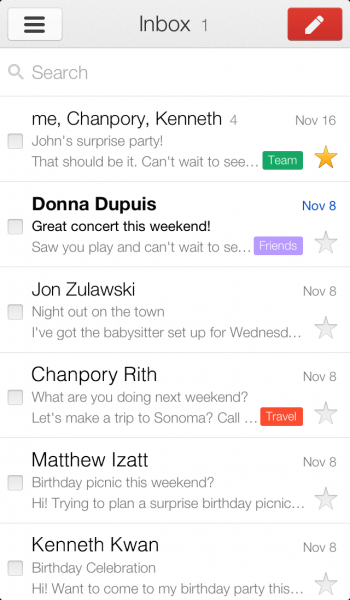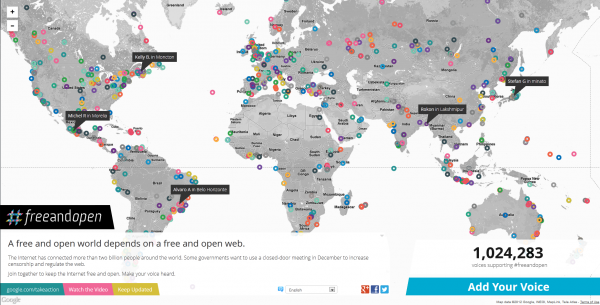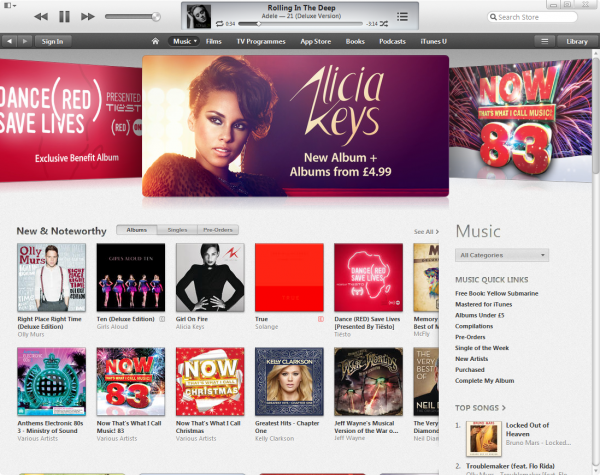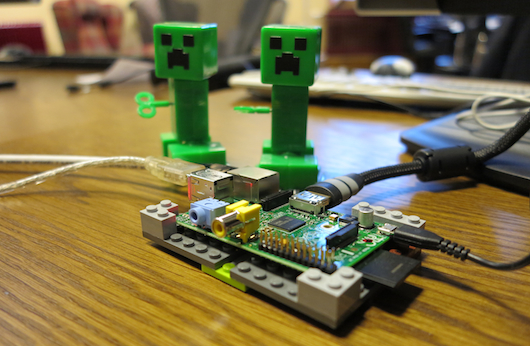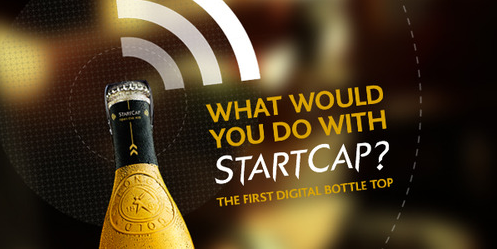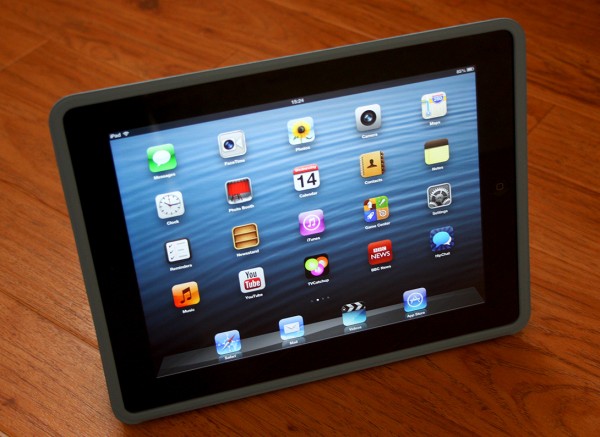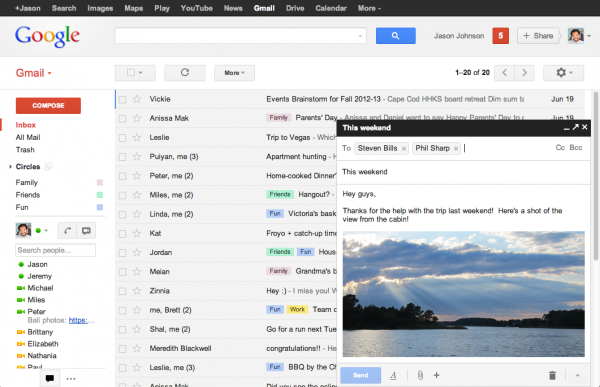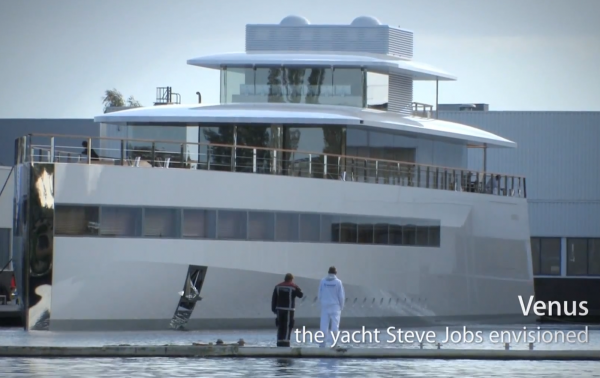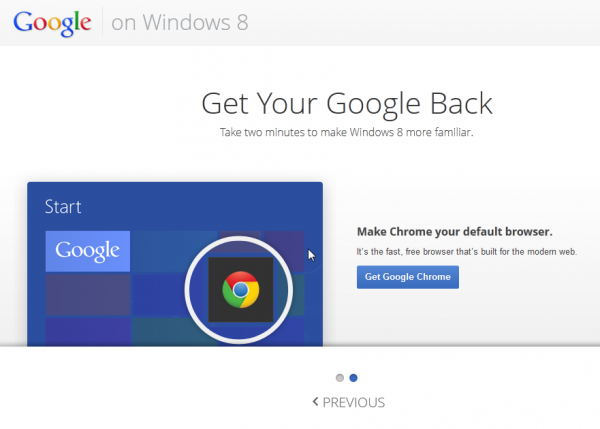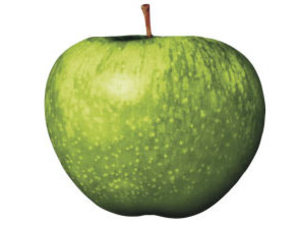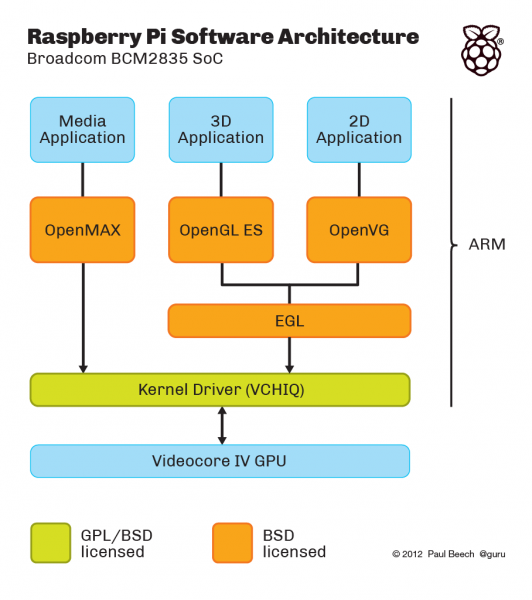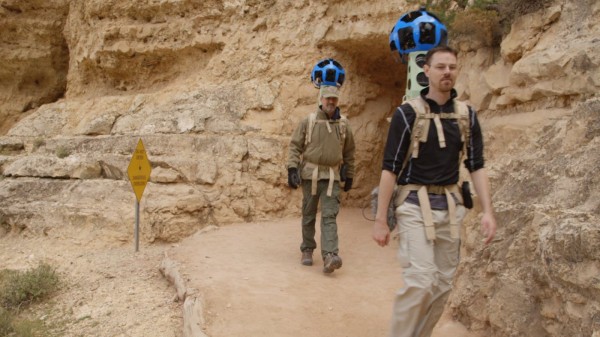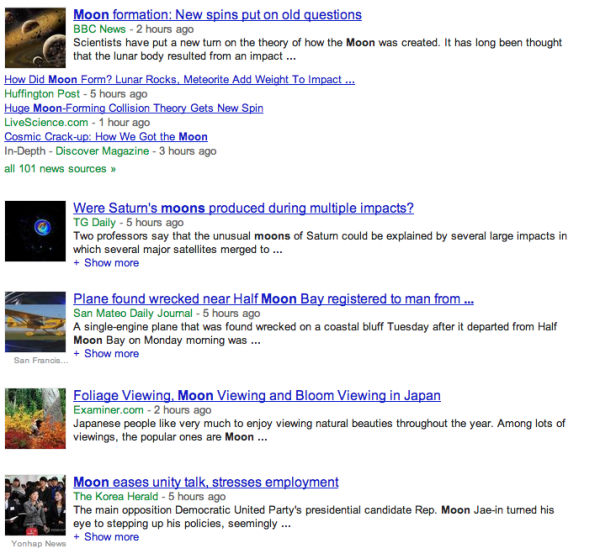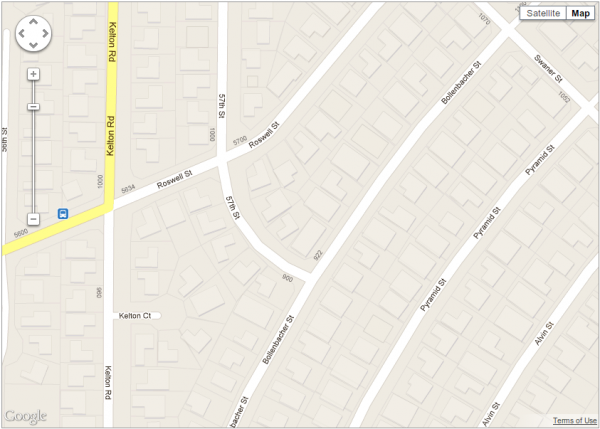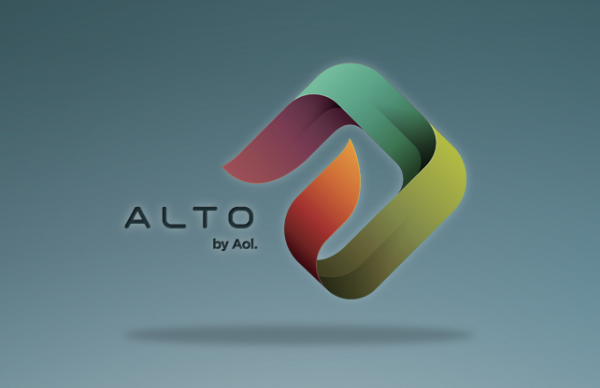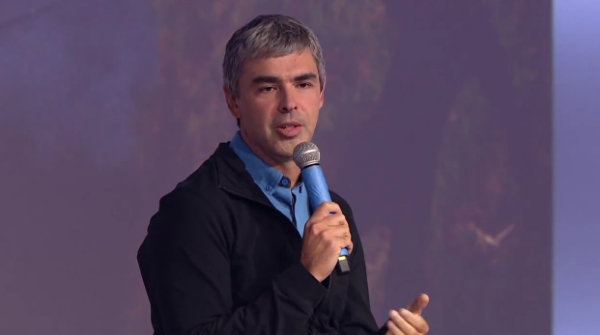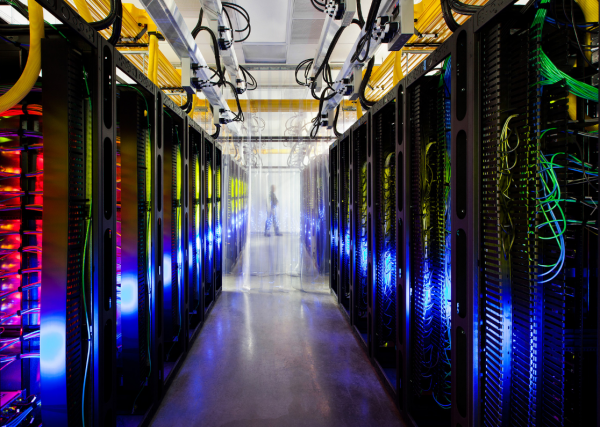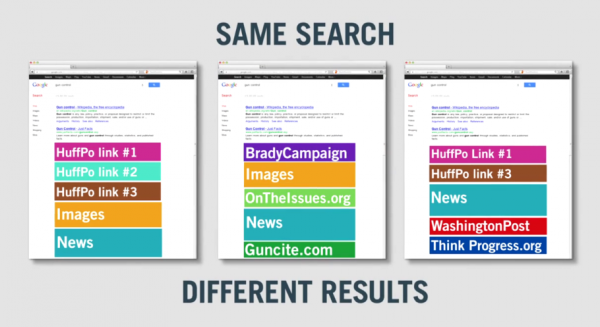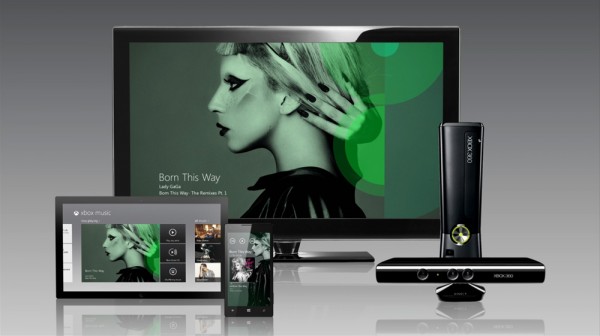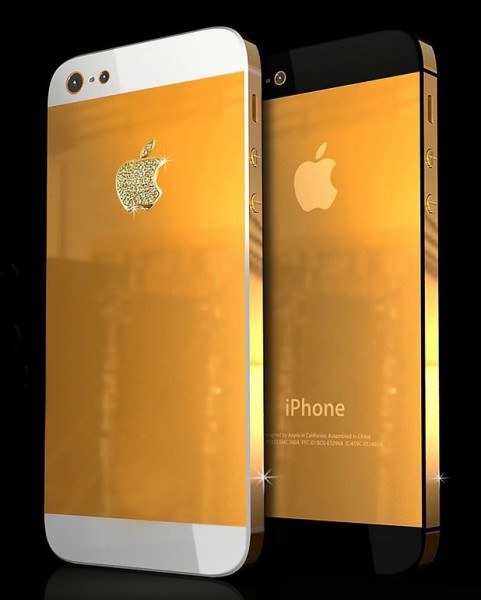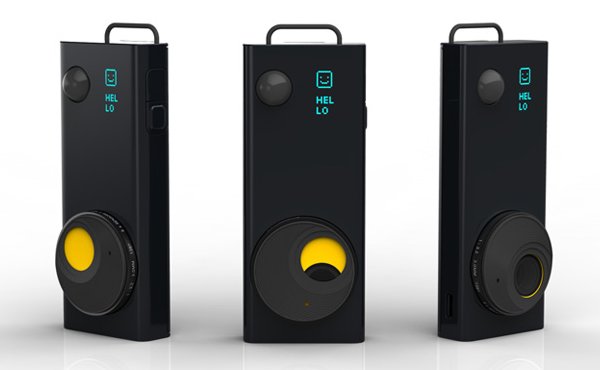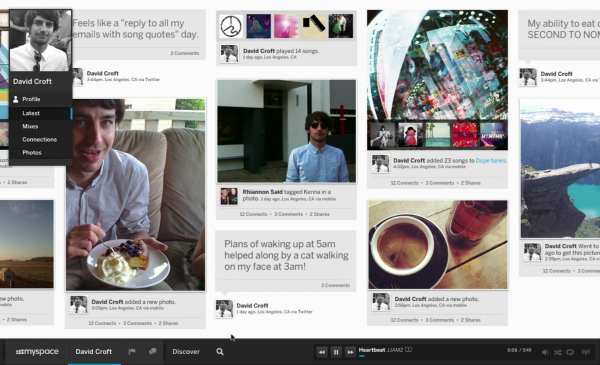Canaux
108470 éléments (108470 non lus) dans 10 canaux
 Actualités
(48730 non lus)
Actualités
(48730 non lus)
 Hoax
(65 non lus)
Hoax
(65 non lus)
 Logiciels
(39066 non lus)
Logiciels
(39066 non lus)
 Sécurité
(1668 non lus)
Sécurité
(1668 non lus)
 Referencement
(18941 non lus)
Referencement
(18941 non lus)
éléments par Wayne Williams
BetaNews.Com
-

Microsoft releases Windows 10 20H1 Build 18965 with a new app restart setting
Publié: août 21, 2019, 8:57pm CEST par Wayne Williams
Last Friday, Microsoft rolled out an action-packed new build for Windows 10 Insiders on the Fast ring that included updates to Task Manager, Virtual Desktops, Optional Features in Settings, Notepad, account profiles, and Windows Search. Today, the software giant brings out Build 18965 with one major new change. SEE ALSO: Microsoft Edge Beta available to download now for Windows and macOS This build’s big addition is control over restarting apps at sign-in. When you restart Windows or sign out and back in again, the OS can reload the apps you had open at the time. This new setting is disabled… [Continue Reading] -

Microsoft Edge Beta available to download now for Windows and macOS
Publié: août 20, 2019, 6:55pm CEST par Wayne Williams
Four months ago, Microsoft released official Dev and Canary builds for its Chromium-based Edge browser, and has been rolling out regular updates for them ever since, with new features and general improvements. However, it’s the Beta release that many people have been holding out for, and today Microsoft has finally made it available for all supported versions of Windows and macOS. If you’ve been wanting to try out the new browser but haven’t fancied installing buggy preview builds, then now's your chance. SEE ALSO: First official builds of Microsoft's Chromium-based Edge browser now available to test The first Microsoft Edge… [Continue Reading] -

Microsoft releases action-packed Windows 10 20H1 Build 18963
Publié: août 16, 2019, 10:31pm CEST par Wayne Williams
Microsoft is busy rolling out new Windows 10 20H1 builds on a weekly basis. Build 18956, released nine days ago, introduced some network and notification improvements. Today’s new flight, Build 18963, brings updates to Task Manager, Virtual Desktops, Optional Features in Settings, Notepad, account profiles, and Windows Search. The Task Manager improvement comes in the form of GPU temperature monitoring support. Select the Performance tab and if you have a dedicated graphics card you can view its current temperature. In this build you can now rename virtual desktops. This is one of those changes which is only being offered to… [Continue Reading] -

Eben Upton dismisses the Raspberry Pi 4's USB-C flaw, blames people for owning expensive chargers
Publié: août 12, 2019, 10:23pm CEST par Wayne Williams
Two months ago, the Raspberry Pi Foundation brought out a brand new version of its hugely popular uncased credit-card sized computer. The Raspberry Pi 4 is described as being a "complete desktop system" for just $35. While it’s a great little computer, it does have one big flaw -- due to a design issue, many chargers aren’t compatible with the new board’s USB-C port, so they won’t work. SEE ALSO: Raspberry Pi 4 is a complete desktop computer for just $35 Flirc 'Kodi Edition' case now available for Raspberry Pi 4 Don't buy the faulty Raspberry Pi 4 -- get… [Continue Reading] -

Microsoft announces Windows 10 20H1 Build 18956 with network and notification improvements
Publié: août 7, 2019, 7:41pm CEST par Wayne Williams
Last week, Microsoft released Build 18950 to Insiders on the Fast ring, and it’s fair to say it wasn’t the most exciting of releases with the headline addition covering Japanese IME improvements. Today’s new flight, Build 18956, is much more interesting with a redesigned Network Status page, notification settings improvements, and Calculator and Cortana app updates. The revamped Network & Internet landing page in Settings aims to deliver more information about your device’s connectivity, with a new view of active connections, and integrated data usage. Notification settings improvements have been available to some Insiders previously, but are now rolling out… [Continue Reading] -

The Geocities Archive Project will make you want to gouge your eyes out [Update]
Publié: août 7, 2019, 11:20am CEST par Wayne Williams
The internet has changed significantly over the years. These days if you want a public presence on the web you can create pages on various social networks, or build websites and host them on your own domain, or on a service like Weebly or Wix. In the nineties though, many of the web’s home brew sites were to be found on GeoCities, and they were usually created with enthusiasm, rather than ability or design sense. The service hosted tens of millions of the ugliest pages ever created, often filled with garish colors, flashing images, tiled backgrounds, and guest books. The… [Continue Reading] -

Get 'Linux All-In-One For Dummies, 6th Edition' ($30 value) FREE for a limited time
Publié: août 6, 2019, 5:21pm CEST par Wayne Williams
Linux All-in-One For Dummies covers topics such as getting up and running with Linux basics, desktops, networking, internet services, administration, security, scripting, Linux certification, and more. Inside, over 500 pages of Linux topics are organized into eight task-oriented mini books that help you understand all aspects of the latest OS distributions of the most popular open-source operating systems in use today. Get your 8 mini books chock full of Linux and learn how to: Install and configure peripherals, software packages, and keep everything current Connect to the internet, set up a local area network (including a primer on TCP/IP, and… [Continue Reading] -

Microsoft releases Windows 10 20H1 Build 18950 and teases forthcoming 'Cloud download' feature
Publié: juillet 31, 2019, 8:27pm CEST par Wayne Williams
Microsoft released two Windows 10 20H1 builds to Insiders last week --18947, which was pushed out accidentally to all Insiders and sported an ugly revamped Start menu without Live titles, and 18945, which rolled out as expected and came with welcome improvements to Cortana, Windows Subsystem for Linux, and File Explorer. Today we’re back to how things usually run, with a new build for Insiders on the Fast ring. Build 18950 isn’t the most exciting of flights -- its headline addition covers Japanese IME improvements, although Microsoft does also reveal that it’s starting to roll out improvements to Snip &… [Continue Reading] -

Users still aren't in any rush to install newer versions of Windows 10
Publié: juillet 30, 2019, 10:15pm CEST par Wayne Williams
AdDuplex monitors the state of adoption for the various Windows 10 versions. Its figures for June showed the October 2018 Update (1809) was only on 30 percent of systems (down from 31.3 percent in May), while the May 2019 Update (1903) was to be found on 6.3 percent of devices in the same time frame. The monitoring firm has just released its figures for July and they show that the May 2019 Update has made its way on to more systems, but at a very cautious pace. In the past month the update has added just 5 percent share and… [Continue Reading] -

Microsoft releases Windows 10 20H1 Build 18945 -- on purpose! -- with improvements to Cortana, Windows Subsystem for Linux and File Explorer
Publié: juillet 26, 2019, 8:09pm CEST par Wayne Williams
Earlier in the week, Microsoft rolled out a new Windows 10 build on the 20H1 branch. Build 18947 arrived with a new retro Start menu without Live tiles, and a GIF search feature. There was just one problem -- it was released by accident. Today the software giant rolls out Build 18945, and this one is intended for installation. It comes with a new Cortana experience, Windows Subsystem for Linux (WSL) Improvements, and an updated File Explorer. SEE ALSO: Microsoft reveals what you need to do if you have rogue Windows 10 Build 18947 Microsoft accidentally releases internal Windows 10… [Continue Reading] -

Microsoft reveals what you need to do if you have rogue Windows 10 Build 18947
Publié: juillet 25, 2019, 9:14am CEST par Wayne Williams
Yesterday, Microsoft accidentally released Build 18947 to all Windows Insiders. The build wasn’t intended for a wide release, and today the software giant reveals how it came to be released, and more importantly, what you need to do to avoid installing it. If you have already installed the build, with its new ugly Start menu, you can easily remove it. The first step is to check to see if you’re running Build 18947. In the Windows search box, type winver and hit enter. In the box that opens check the build number there. If you do have it, follow these… [Continue Reading] -

Microsoft accidentally releases internal Windows 10 preview build with new Start menu and no Live Tiles
Publié: juillet 24, 2019, 5:04pm CEST par Wayne Williams
Microsoft has unintentionally released Windows 10 Build 18947 to all Insiders, including those on the Slow and Release Preview rings. It was originally believed it was only rolling out to 32-bit devices, but that appears not to be the case. This build hasn’t undergone proper testing, so could cause problems if installed. Microsoft says it is "looking into" the leak, but in the meantime, if you’re an Insider and you don’t want this build, be sure to reject it when it turns up. However, the new build, which was apparently meant for internal Xbox development, does have an interesting new… [Continue Reading] -

Enterprises lagging behind on Windows 10 migration
Publié: juillet 23, 2019, 2:37pm CEST par Wayne Williams
Windows 7 support comes to an end six months from now, although businesses will be able to pay for Windows 7 Extended Security Updates (ESU) for a further three years -- at a ratcheted cost. Windows Enterprise customers can expect to pay $25 per device for the updates, rising to $100 in the third year. For Windows 7 Professional, the starting figure is $50 per device, rising to $200. Aware that time is running out, many enterprises have already moved to Windows 10, but a large number remain significantly behind in completing the migration process, according to new findings from… [Continue Reading] -

Microsoft releases Windows 10 20H1 Build 18941, but warns the installation may fail or cause your PC to get stuck in a boot loop
Publié: juillet 18, 2019, 8:40pm CEST par Wayne Williams
Windows Insiders like to be on the cutting edge, trying out new Windows 10 features well before regular users do. For that reason, most Insiders opt to be in the Fast ring, rather than the Slow or Release Preview rings. It does mean they are more at risk from potential problems of course, but that’s often a risk worth taking. Often, but not always. SEE ALSO: Avast bundles buggy preview web browser with CCleaner, leading to predictable nightmarish results Windows 1.11 and Windows Throwback now available to download Build 18941 isn't particularly exciting, as the main addition is an updated… [Continue Reading] -

Avast bundles buggy preview web browser with CCleaner, leading to predictable nightmarish results
Publié: juillet 17, 2019, 6:22pm CEST par Wayne Williams
Ever since Avast took over Piriform in 2017, fans of the popular system cleaning tool CCleaner have had to put up with problem after problem, beginning -- yes beginning! -- with malware, bundled software, and pop-up ads. As if that wasn’t bad enough, CCleaner began snooping on users and Avast, for good measure, also made it impossible to quit the software. Things have quietened down recently, but with the latest version of CCleaner it seems as if Avast is up to its old tricks again, this time bundling an unwanted, buggy web browser and changing file extensions. SEE ALSO: CCleaner… [Continue Reading] -

This beautiful Android R design could make me switch from iOS
Publié: juillet 17, 2019, 2:27pm CEST par Wayne Williams
I’ve switched between owning an iPhone and various Android handsets over the years, but for me iOS remains easily the best mobile operating system (and iPhone XS the best smartphone). It would take something very special to tempt me back to Android. Something like this stylish vision of Android 11. SEE ALSO: Feast your eyes on how Apple's iOS 13 should look Forget buggy Windows 10, Windows 11 is the operating system we want Windows 7 -- 2018 Edition is the Microsoft operating system you've been waiting for Forget Windows 10, it's Windows Vista -- 2018 Edition we want! Windows… [Continue Reading] -

Microsoft releases Windows 10 19H2 Build 18362.10005 to the Slow ring
Publié: juillet 15, 2019, 8:11pm CEST par Wayne Williams
Windows Insiders on the Fast ring have been receiving weekly Windows 10 builds from the 20H1 branch -- the feature update due out a year from now. There is another update coming later this year though, and Insiders on the Slow ring are receiving these 19H2 builds as cumulative updates. Build 18362.10005, released today, includes the fixes in KB4507453 for the May 2019 Update, as well as the following changes and improvements: Windows containers require matched host and container version. This restricts customers and limits Windows containers from supporting mixed-version container pod scenarios This update includes 5 fixes to address… [Continue Reading] -

Ekster Parliament 3.0 voice-activated smart wallet [Review]
Publié: juillet 11, 2019, 2:06pm CEST par Wayne Williams
There are three things you likely never leave home without -- your wallet, phone, and keys -- and it could be devastating if you lost any of them, or had them stolen. Ekster 3.0 launched a couple of days ago and is the world’s first voice-activated smart wallet, with worldwide traceability, quick card access, and RFID protection. You can use your phone to track down the wallet should you lose it, and use the wallet to find your phone if that goes missing. (It can’t help with your keys though, so take good care of those). Ekster offers a choice… [Continue Reading] -

Microsoft releases Windows 10 20H1 Build 18936 with passwordless sign-ins
Publié: juillet 11, 2019, 10:32am CEST par Wayne Williams
Even though the next major feature update for Windows 10 isn’t due for a year, Microsoft is rolling out weekly new builds for it. Windows 10 20H1 Build 18936 offers a number of new features, including the ability to go passwordless on your device, and create calendar events directly from the taskbar. SEE ALSO: Compatibility issues stand in the way of installing Windows 10 May 2019 Update on some Macs Windows 1.11 and Windows Throwback now available to download The first new change is for the Your Phone app and sees the availability of the phone screen feature expand to… [Continue Reading] -

Windows 1.11 and Windows Throwback now available to download
Publié: juillet 8, 2019, 7:46pm CEST par Wayne Williams
Last week Windows’ social accounts caused some excitement and confusion by announcing the arrival of Windows 1.0. I correctly guessed that it was part of a Stranger Things tie-in because the newly launched season 3 of Netflix’s supernatural drama is set in 1985, the same year that Microsoft launched Windows 1.0. A new Windows 1.11 app briefly appeared over the weekend before being withdrawn, and it’s now back up and available for anyone to download. And that's not all. SEE ALSO: Hands on with Windows 1.11, the Stranger Things tie-in you didn't know you needed (minor spoilers) The description of… [Continue Reading] -

Hands on with Windows 1.11, the Stranger Things tie-in you didn't know you needed (minor spoilers)
Publié: juillet 6, 2019, 10:07pm CEST par Wayne Williams
This week Microsoft has been teasing users across the web with a series of Windows 1.0 announcements. That operating system originally came out in 1985, and the latest season of Netflix’s Stranger Things is set in the same year, so there was never any doubt that the teasers and the show were linked in some way. But how? On Friday Microsoft revealed we’d know the answer on Monday, but we now know exactly what’s coming -- Windows 1.11. Yes, it’s Windows 1.0, but turned up to Eleven -- of course it is. Eagle-eyed Windows 10 users have spotted a new… [Continue Reading] -

Microsoft's Windows 1.0/Stranger Things tie-in just got stranger
Publié: juillet 5, 2019, 9:09pm CEST par Wayne Williams
Microsoft has been running an amusing series of tweets on its Windows social accounts. It announced Windows 1.0 back on July 1, and then followed up it across the week with additional Windows 1.0 images and videos. While some people, and some news sites, were seemingly confused by the move, it was clear from the start for a lot of us that it was a Stranger Things 3 tie in, seeing as the new season is set in 1985, the same year that Windows 1.0 arrived. But although each new tweet has made the link clearer, today’s one also includes… [Continue Reading] -

Microsoft releases Windows 10 20H1 Build 18932 with notification improvements
Publié: juillet 3, 2019, 6:48pm CEST par Wayne Williams
When it’s not crowing about the cutting edge abilities of Windows 1.0, Microsoft is busy working on the next big feature update for Windows 10, due out next year. Today it rolls out Build 18932 which introduces some eye control improvements, and refined notification settings, among other changes. Users controlling Windows with their eyes are now able to perform mouse drag and drop, and there have been improvements made to the pause and button clicking functions too. Settings now allows users to manage more eye control features. Microsoft has made a number of welcome changes to how notifications work. These… [Continue Reading] -

Microsoft announces Windows 1.0
Publié: juillet 2, 2019, 11:33am CEST par Wayne Williams
The new season of Stranger Things starts on Netflix this Thursday -- July 4th -- and is being described by reviewers as a return to form, great news for anyone who felt a bit let down by season 2. The new season is set in 1985, a year which gave us the Live Aid concerts, New Coke, Calvin and Hobbes, Back to the Future, and the first version of Microsoft Windows. SEE ALSO: New version of Windows 95 runs faster on Windows 10, macOS and Linux Give your Apple iPhone a Windows 95 makeover with iOS95 For a bit of… [Continue Reading] -

Windows XP pops Cherry at Glasto
Publié: juillet 1, 2019, 4:05pm CEST par Wayne Williams
When you’re performing live at one of the biggest music festivals in the world, it’s probably not advisable to trust your background visuals to an old laptop running Windows XP. This is a lesson that Neneh Cherry learned to her cost at this weekend’s Glastonbury when the laptop generating images on the rear video screen decided to reboot unexpectedly during a performance of her hit 7 Seconds. SEE ALSO: Microsoft issues new patch for Windows XP to fight a dangerous 'wormable' vulnerability Windows XP 2018 Edition is the operating system Microsoft should be making With perfect timing, as Cherry sang… [Continue Reading] -

The separation of storage and compute [Q&A]
Publié: juin 29, 2019, 9:39am CEST par Wayne Williams
Business intelligence and analytic projects have traditionally been based on the concept of the enterprise data warehouse, which saw compute and storage combined in a monolithic platform to achieve the performance required for high-performance analytics. More recently, the trend has been toward data lakes, but this was similarly based on the approach of putting all data in a single environment -- initially Hadoop -- for storage and analysis. We spoke with Justin Borgman, CEO for Starburst Data, on why he believes the separation of storage and compute in the data processing and analytics sector is a trend that will continue… [Continue Reading] -

Only a tiny fraction of Windows 10 users are running the May 2019 Update
Publié: juin 28, 2019, 9:12pm CEST par Wayne Williams
The latest Windows 10 feature release, the May 2019 Update, is slowly making its way to users, but after the mess that was the October 2018 Update, Microsoft is keeping a close eye on proceedings. As a result, it means the rollout is happening at an incredibly glacial pace. In fact, it's occurring at roughly the same rate as its predecessor, which isn't good news. SEE ALSO: Microsoft notifies users whose systems are 'not quite ready' for Windows 10 May 2019 Update Everything new and improved in the Windows 10 May 2019 Update (and how to use it) Free up… [Continue Reading] -

New Kodi update arrives -- download it now!
Publié: juin 27, 2019, 11:51pm CEST par Wayne Williams
Earlier in the week the Raspberry Pi Foundation announced the arrival of the Raspberry Pi 4, a much more powerful version of its barebones credit-card sized computer that’s hugely popular with Kodi users. You can even buy a cool Kodi-themed case for it. Hot on the heels of a new version of LibreELEC, the lightweight Linux distro that’s perfect for running Kodi on a Pi, the Kodi Foundation releases a new version of its home theatre software. SEE ALSO: Kodi 19 M's codename revealed The Kodi Foundation DOES NOT MAKE HARDWARE! The Kodi Foundation joins the Linux Foundation Kodi 18.3… [Continue Reading] -

Flirc 'Kodi Edition' case now available for Raspberry Pi 4
Publié: juin 25, 2019, 6:36pm CEST par Wayne Williams
The Raspberry Pi is understandably very popular with Kodi users, as it makes for a great, portable home theater system. There’s even a dedicated version of Kodi designed purely for the Pi. Yesterday, the Raspberry Pi Foundation launched the latest, and easily most powerful version of its barebones computer -- the Raspberry Pi 4. The trouble is, it has a different board layout, making it incompatible with existing cases. SEE ALSO: Raspberry Pi 4 is a complete desktop computer for just $35 Kodi 'Leia' 18.2 now available to download with bug fixes and performance improvements Nebra AnyBeam: A Raspberry Pi… [Continue Reading] -

Raspberry Pi 4 is a complete desktop computer for just $35
Publié: juin 24, 2019, 8:00am CEST par Wayne Williams
The Raspberry Pi was originally designed to provide an ultra-cheap way to encourage kids to code, but the uncased credit card sized computer has found an appreciative audience well outside of the education system, going on to sell over a million Pis in its first year alone. Each new iteration of the Pi has added something new, including a 64-bit processor, dual-band 802.11ac Wi-Fi, and Power over Ethernet (PoE) via a HAT. Today, the Raspberry Pi Foundation announces the Raspberry Pi 4, and it’s a game changer, offering three times the processing power and four times the multimedia performance of… [Continue Reading] -

Microsoft releases Windows 10 20H1 Build 18922 to the Fast ring
Publié: juin 20, 2019, 4:15pm CEST par Wayne Williams
Work is progressing well on the next big feature update of Windows 10, due out a year from now. Some builds offer a lot of new features, others are more about fixing problems and making general improvements. Build 18922 falls into the latter category, although it does have some language settings improvements and Feedback Hub updates. SEE ALSO: Microsoft releases Windows 10 20H1 Build 18917 with Windows Subsystem for Linux 2 (WSL 2) The latest build makes it easier for you to see the current state of your language settings via a new overview section, and the Feedback Hub now… [Continue Reading] -

How to install Windows Subsystem for Linux 2 (WSL 2) on Windows 10
Publié: juin 19, 2019, 3:43pm CEST par Wayne Williams
A month ago, at its Build 2019 developer conference, Microsoft announced Windows Subsystem for Linux 2, an updated version of its compatibility layer which ships with an actual Linux kernel, meaning full system call compatibility. Last week, the software giant rolled out Windows 10 20H1 Build 18917 with Windows Subsystem for Linux 2 (WSL 2). Here’s how to install it. SEE ALSO: How to center Windows 10 taskbar icons How to use emoji to name files and folders on Windows 10 How to download any version of Windows 7, Windows 8.1 and Windows 10 (and Office) How to check the… [Continue Reading] -

How to center Windows 10 taskbar icons
Publié: juin 17, 2019, 8:59pm CEST par Wayne Williams
Windows left-aligns all of the icons on your taskbar. This looks tidy enough, but if you fancy a change -- or perhaps you wish the taskbar looked more like the Dock in macOS -- you can center the buttons, or make other changes to their positioning. You can add some cool animations too. SEE ALSO: How to use emoji to name files and folders on Windows 10 How to download any version of Windows 7, Windows 8.1 and Windows 10 (and Office) How to check the battery status of Bluetooth devices on Windows 10 All you need to do is… [Continue Reading] -

Feast your eyes on how Apple's iPhone 11 should look
Publié: juin 17, 2019, 5:28pm CEST par Wayne Williams
We’ve still got a few months to wait before Apple unveils the follow-up to the iPhone XS, although there have already been a number of leaks and a lot of speculation regarding the next iteration of the iPhone. It’s believed that Apple will add under-display cameras, allowing for notch-less full screen, introduce reverse-wireless charging -- so users can charge AirPods directly from the handset -- and swap the Lightning connector for USB-C. SEE ALSO: 'Files' for Microsoft's Windows Lite OS looks amazing running on a foldable Surface MSN Messenger 2019 Edition is the messaging app you didn't know you needed… [Continue Reading] -

Nebra AnyBeam: A Raspberry Pi powered home cinema projector you can fit in your pocket [Review]
Publié: juin 14, 2019, 5:16pm CEST par Wayne Williams
Before large screen televisions and 4K content became a thing, I used to enjoy watching films projected onto a white wall at home. I had a Canon projector hooked up to my PC with surround sound, and it was like having a personal cinema. Technology has moved on quite some way since then, and you can now buy reasonable quality projectors for a fraction of the price. Case in point is Nebra AnyBeam, a Raspberry Pi powered pocket sized projector. The projector, which was originally available to fund through Kickstarter, comes in four different models. There’s the standalone Nebra AnyBeam,… [Continue Reading] -

Microsoft releases Windows 10 20H1 Build 18917 with Windows Subsystem for Linux 2 (WSL 2)
Publié: juin 13, 2019, 9:24am CEST par Wayne Williams
Windows Insiders are currently testing builds from the 20H1 branch due out a year from now. The latest new flight, Build 18917, introduces download throttling and Windows Subsystem for Linux 2, as well as a whole host of other improvements. SEE ALSO: Free up over 17GB of storage space by cleaning up after the Windows 10 May 2019 Update How to use emoji to name files and folders on Windows 10 How to download any version of Windows 7, Windows 8.1 and Windows 10 (and Office) How to rollback and uninstall the Windows 10 May 2019 Update In response to… [Continue Reading] -

Free up over 17GB of storage space by cleaning up after the Windows 10 May 2019 Update
Publié: juin 12, 2019, 7:21pm CEST par Wayne Williams
Microsoft has released another big feature update for Windows 10. The May 2019 Update is rolling out to compatible systems now, although you can force the update if required. Of course, a big update like this requires a big download, and the files that Microsoft places on your system don’t get removed immediately afterwards. In other words, the May 2019 Update -- Windows 10 1903 -- could be responsible for taking up tens of gigabytes on your hard drive. Fortunately it’s easy enough to reclaim this. SEE ALSO: How to use emoji to name files and folders on Windows 10… [Continue Reading] -

How to download any version of Windows 7, Windows 8.1 and Windows 10 (and Office)
Publié: juin 7, 2019, 8:50pm CEST par Wayne Williams
If you want to download an ISO file of the latest version of Windows 10, the process is very straightforward -- just use Microsoft’s Media Creation tool to generate the image file for you. But what if you want an older version of Windows 10? The October 2018 Update, say (hey, some people have it). Or what if you want a copy of Windows 7 or 8.1? There are a couple of ways to get the file you need, but we'll show you one of the simplest. SEE ALSO: How to rollback and uninstall the Windows 10 May 2019 Update… [Continue Reading] -

How to rollback and uninstall the Windows 10 May 2019 Update
Publié: juin 7, 2019, 7:51pm CEST par Wayne Williams
The Windows 10 May 2019 Update is currently rolling out to users. If you install it and encounter major problems, as some users doubtless will, you might want to go back to your previous version, and wait until the update is a bit less buggy. The process is straightforward enough, although there are some downsides to be aware of. SEE ALSO: How to check the battery status of Bluetooth devices on Windows 10 Here are all the features Microsoft removed or deprecated in Windows 10 May 2019 Update Force Windows 10 to install the May 2019 Update NOW How to… [Continue Reading] -

iPadOS is Apple's new operating system for iPad
Publié: juin 3, 2019, 9:34pm CEST par Wayne Williams
At its WWDC in San Jose, California, Apple today took the wraps off iOS 13, the future iteration of its mobile operating system for iPhone. It also revealed that going forward, the iPad will run a special variation, called iPadOS. This is much the same as iOS -- it gains all the new features found in iOS 13 -- but in addition it comes with a new Home Screen, better multitasking, and more ways to use Apple Pencil. SEE ALSO: Apple introduces the all-new Mac Pro and Pro Display XDR "iPad transforms how people work and express their creativity, and… [Continue Reading] -

Apple introduces the all-new Mac Pro and Pro Display XDR
Publié: juin 3, 2019, 9:10pm CEST par Wayne Williams
The focus of Apple’s WWDC is predominately software, but the tech giant likes to occasionally introduce new hardware there too. At the event being held today, Apple lifted the lid on iOS 13 and watchOS 6, but also introduced the redesigned Mac Pro workstation and Apple Pro Display XDR. The all-new Mac Pro features "workstation-class" Xeon processors up to 28 cores, a high-performance memory system with 1.5TB capacity, eight PCIe expansion slots and a graphics architecture featuring what Apple claims is "the world’s most powerful graphics card". It also introduced Apple Afterburner, an accelerator card that Apple says enables playback… [Continue Reading] -

Apple unveils the stunning iOS 13 with a system-wide Dark Mode, Sign In with Apple, and all-new Photos app
Publié: juin 3, 2019, 8:56pm CEST par Wayne Williams
At its WWDC in San Jose, California, Apple today took the wraps off iOS 13, revealing many of the new features we were expecting see, as well as plenty of new additions we weren't. We’ve previously seen concept videos of iOS 13, and two months ago my colleague Mark Wyciślik-Wilson revealed Apple's new mobile OS would be introducing a system-wide dark mode, and better multitasking. But what else is new? In addition to the dramatic Dark Mode, there are advanced Photo and Camera features, the ability to securely sign into apps using Sign In with Apple, and an all-new Maps… [Continue Reading] -

'Files' for Microsoft's Windows Lite OS looks amazing running on a foldable Surface
Publié: mai 30, 2019, 11:08am CEST par Wayne Williams
Back in 2015, Microsoft said that Windows 10 would be the last version of Windows. The software giant views its newest operating system as a service that’s continually updated. Although problems with both the October 2018 Update and May 2019 Update mean that’s not really true at the moment. Most Windows 10 users are still on the April 2018 Update. Device manufacturers are continuing to innovate, and Chromebooks are showing a very different future from the one Windows 10 is offering us. This is where the modern "Windows Lite" comes in. SEE ALSO: Microsoft drops some very big hints about… [Continue Reading] -

Microsoft releases Windows 10 20H1 Build 18908 with more features for Your Phone
Publié: mai 29, 2019, 10:55pm CEST par Wayne Williams
Microsoft has been teasing us with talk of a new "modern" operating system, but that doesn’t mean it’s forgotten about Windows 10. Today it releases a new Fast ring build on the 20H1 branch -- the feature update set to roll out to users a year from now -- and adds a wealth of new features to the Your Phone app. SEE ALSO: Most Windows 10 users are running the update from over a year ago Microsoft drops some very big hints about its modern 'Windows Lite' OS Here are all the features Microsoft removed or deprecated in Windows 10… [Continue Reading] -

Most Windows 10 users are running the update from over a year ago
Publié: mai 29, 2019, 7:08pm CEST par Wayne Williams
Microsoft’s original grand plan for Windows 10 was an operating system that was always up-to-date. Updates were intended to be mandatory, and while you could delay them a bit, you couldn’t opt out of them entirely. And the software giant was committed to rolling out two major feature updates a year. Fast forward to now, and things are very different. You can delay, or avoid, most updates, including feature updates -- assuming you’re even offered them in the first place. SEE ALSO Microsoft drops some very big hints about its modern 'Windows Lite' OS Here are all the features Microsoft… [Continue Reading] -

Microsoft drops some very big hints about its modern 'Windows Lite' OS
Publié: mai 29, 2019, 5:40pm CEST par Wayne Williams
It’s been hinted for a while that Microsoft is working on a new operating system for dual-screen and Chromebook-like PCs, and while the software giant has yet to confirm the existence of the rumored "Windows Lite" OS, Nick Parker, Corporate Vice President, Consumer and Device Sales, did drop some pretty big hints about it at Computex 2019 in Taipei. While on stage he referred continually to a modern operating system designed to run on "modern PCs and innovative devices" that offers seamless background updates and zero interruptions, greater security, and always on connectivity. In his Computex post about next generation… [Continue Reading] -

Surprise! Apple unveils a brand new iPod touch with AR and Group FaceTime
Publié: mai 28, 2019, 3:12pm CEST par Wayne Williams
It was the iPod touch that first turned me on to iOS. The gateway drug to getting an iPhone if you will. I had the second and third gen models before graduating to Apple’s smartphone (and the iPad), and if it wasn't for that, I'd probably be an Android user with a Samsung Galaxy S10. I wouldn’t buy an iPod touch now that I have an iPhone XS, but if you want to enjoy the delights offered by the App Store, without spending a fortune on a flagship phone, then it’s the perfect solution, and Apple has just introduced a… [Continue Reading] -

Here are all the features Microsoft removed or deprecated in Windows 10 May 2019 Update
Publié: mai 23, 2019, 10:46am CEST par Wayne Williams
Microsoft began to roll out the latest big feature update for Windows 10 a couple of days ago, and you can get it via Windows Update, or force the update if it’s not yet showing up for you. With each new OS update, however, some existing features get dropped, or stop being actively developed. Here’s what’s missing in Windows 10 1903, the May 2019 Update.. SEE ALSO: Force Windows 10 to install the May 2019 Update NOW New version of Windows 95 runs faster on Windows 10, macOS and Linux How to download the Windows 10 May 2019 Update and… [Continue Reading] -

Force Windows 10 to install the May 2019 Update NOW
Publié: mai 22, 2019, 7:16pm CEST par Wayne Williams
After an extended period of testing in the Release Preview ring, Microsoft has finally started rolling out the May 2019 Update to Windows 10 users, albeit in a "measured and throttled" way. You might be able to get it now by going through Settings > Update & Security > Windows Update or, failing that, via the Media Creation tool. There is a very simple way to force Windows 10 to start the upgrade process immediately however. If the new feature update is not currently showing up in Windows Update, then go to the Download Windows 10 page, and click on… [Continue Reading] -

How to download the Windows 10 May 2019 Update and create your own installation USB flash drive or DVD
Publié: mai 21, 2019, 8:03pm CEST par Wayne Williams
Windows 10 May 2019 Update is now rolling out to users with compatible systems. If you can’t wait to try the new features, the good news is Microsoft has updated its Media Creation tool to include the update and you can use this to download Windows 10 now and create your own installation media on either a USB flash drive or DVD. This is particularly handy if you want to perform a clean install, or update multiple computers in quick succession. SEE ALSO: Windows 10 May 2019 Update now available -- Here's how to get it Windows 10 May 2019… [Continue Reading] -

Windows 10 May 2019 Update now available -- Here's how to get it
Publié: mai 21, 2019, 7:33pm CEST par Wayne Williams
After the mess that was the October 2018 Update, Microsoft has been a lot more cautious with the follow up, giving it an extended period of testing in the Release Preview ring. Today, the software giant declares the May 2019 Update stable enough to begin making it available to non-Insiders, although it says it will still be taking a "measured and throttled" approach to availability. To get the update, go to Settings > Update & Security > Windows Update and select Check for updates. If the update appears, select Download and install now. If it’s not there, you’ll have to… [Continue Reading] -

Windows 10 May 2019 Update rolling out now -- Here's how to get it
Publié: mai 21, 2019, 7:33pm CEST par Wayne Williams
After the mess that was the October 2018 Update, Microsoft has been a lot more cautious with the follow up, giving it an extended period of testing in the Release Preview ring. Today, the software giant declares the May 2019 Update stable enough to begin making it available to non-Insiders, although it says it will still be taking a "measured and throttled" approach to availability. To get the update, go to Settings > Update & Security > Windows Update and select Check for updates. If the update appears, select Download and install now. If it’s not there, you’ll have to… [Continue Reading] -

PDF Shaper 9 gains a new interface and a wealth of improvements
Publié: mai 21, 2019, 2:57pm CEST par Wayne Williams
There are plenty of applications you can use to view and print PDF files, including Microsoft Edge. Some of them offer editing features, but they are usually a bit limited. PDF Shaper is a collection of tools which will let you merge and split PDF files, rotate and crop pages, extract text and images, edit metadata, add a page number watermark, and convert PDFs to images (and vice versa) or to text. Just open one or more PDFs, and select the option you require. You can get information on the PDF (such as the application used to create it), and… [Continue Reading] -

Game of Thrones' divisive finale sure has people talking...
Publié: mai 20, 2019, 8:51pm CEST par Wayne Williams
Game of Thrones has never been a show to play things safe. Every time viewers thought they knew where things were going, the series would usually prove them wrong -- often with an unexpected death, or a twist hardly anyone saw coming. The eighth and final season has just ended, and it’s fair to say -- like much of the eighth season (episode five, The Bells, in particular) -- the finale left viewers divided. I personally loved it (albeit not unreservedly), while my colleague Brian Fagioli hated it. Either way, people have been talking about it. SEE ALSO: Game of… [Continue Reading] -

The first Microsoft Edge preview build arrives for macOS -- this is why you should care
Publié: mai 20, 2019, 7:52pm CEST par Wayne Williams
If you’re a Windows 10 user then you might be interested in -- or even excited for -- the next generation of Microsoft’s Edge browser which is being built around Chromium. If you’re a Mac user, then you likely couldn’t care less about it. Still, Microsoft is hoping it can change your mind and today it introduces the first preview build for macOS. SEE ALSO: First official builds of Microsoft's Chromium-based Edge browser now available to test Chromium-based Microsoft Edge pretends to be different browsers by switching user agent How to enable dark mode in new Chromium-based Microsoft Edge Microsoft… [Continue Reading] -

MSN Messenger 2019 Edition is the messaging app you didn't know you needed
Publié: mai 16, 2019, 9:05pm CEST par Wayne Williams
These days, if you want to chat with friends and family you probably do so through one of the many mobile messaging choices -- such as WhatsApp, Facebook Messenger, or Snapchat. Before mobile communications really took off, Microsoft’s cross-platform MSN Messenger (later rebranded Windows Live Messenger) was the chat tool. At its peak, some 330 million users a month were logging into the instant messaging client. MSN Messenger was discontinued in 2014, with Microsoft’s acquisition of Skype from eBay largely to blame for its demise, but if you’ve ever wondered what the chat tool might look like if it was… [Continue Reading] -

Microsoft releases Windows 10 20H1 Build 18898 with Task Manager improvements
Publié: mai 15, 2019, 7:47pm CEST par Wayne Williams
The May 2019 Update is still undergoing testing in the Release Preview ring, but Microsoft is busy working on builds from the 20H1 branch, the feature update set to be released in the first half of next year. We’re starting to see new features arriving on that branch, and today’s flight, Build 18898, adds a useful addition to the Task Manager. SEE ALSO: Microsoft issues new patch for Windows XP to fight a dangerous 'wormable' vulnerability Microsoft releases Windows 10 20H1 Build 18895 -- fixes Your Phone app PowerToys are back! Microsoft reboots the utilities as an open source project… [Continue Reading] -

How to check if your Windows or Linux system is vulnerable to Microarchitectural Data Sampling (MDS) attacks
Publié: mai 15, 2019, 9:21am CEST par Wayne Williams
Intel yesterday disclosed a new group of Microarchitectural Data Sampling (MDS) hardware vulnerabilities that affect its CPUs. Rogue In-Flight Data Load (RIDL), Fallout, and ZombieLoad speculative execution attacks are related to Spectre and Meltdown which were discovered last year, and allow attackers to leak in-flight data from CPU-internal buffers (Line Fill Buffers, Load Ports, Store Buffers), including data never stored in CPU caches. SEE ALSO: Microsoft issues new patch for Windows XP to fight a dangerous 'wormable' vulnerability You can find out more about the various vulnerabilities at CPU.fail. The problem affects all modern Intel CPUs across servers, desktops and… [Continue Reading] -

Microsoft issues new patch for Windows XP to fight a dangerous 'wormable' vulnerability
Publié: mai 14, 2019, 9:29pm CEST par Wayne Williams
Microsoft stopped supporting Windows XP back into 2014, but took the 'highly unusual' step of releasing a patch for the ancient OS two years ago in a bid to fightback against the WannaCry ransomware, and then included XP in that June’s Patch Tuesday updates. You’d be forgiven for thinking that that would be the very last time Microsoft patched XP, but no. The software giant has included Windows XP and Windows Server 2003 (also no longer supported) in today’s Patch Tuesday fixes. SEE ALSO: Windows XP 2018 Edition is the operating system Microsoft should be making How to get regular… [Continue Reading] -

Microsoft releases Windows 10 20H1 Build 18895 -- fixes Your Phone app
Publié: mai 10, 2019, 7:40pm CEST par Wayne Williams
Development is proceeding well on Windows 10 20H1, even though that feature update isn’t set to be released until the first half of next year. Microsoft rolled out Build 18894 two days ago, with File Explorer and Accessibility improvements, and today it releases build 18895 with an important fix -- although this flight isn’t available to everyone. SEE ALSO: Microsoft releases Windows 10 20H1 Build 18894 with File Explorer and Accessibility improvements PowerToys are back! Microsoft reboots the utilities as an open source project for Windows 10 Windows Terminal is a new Linux-inspired command line app for Windows 10 Is… [Continue Reading] -

Microsoft releases Windows 10 20H1 Build 18894 with File Explorer and Accessibility improvements
Publié: mai 8, 2019, 8:29pm CEST par Wayne Williams
Windows 10 19H1 -- aka the May 2019 Update -- is currently undergoing testing in the Release Preview ring, with the aim being to start rolling it out to all by the end of the month. In the meantime, the software giant is working on builds from the 20H1 branch, the feature update set to be released a whole year from now. SEE ALSO: PowerToys are back! Microsoft reboots the utilities as an open source project for Windows 10 Windows Terminal is a new Linux-inspired command line app for Windows 10 Is it game over for the Microsoft Store? (And… [Continue Reading] -

Google unveils the mid-range Pixel 3a and Pixel 3a XL -- same powerful camera, much more affordable price
Publié: mai 7, 2019, 9:22pm CEST par Wayne Williams
It’s getting increasingly difficult for hardware companies to keep their new smartphones under wraps. Leaks prior to the official announcement mean we often know all about a new device well in advance. We already knew a lot about the new Pixel phones that Google revealed today at its I/O conference, but it’s good to have everything confirmed. If you've always fancied a Pixel smartphone but couldn't justify the asking price, then the new Pixel 3a and Pixel 3a XL could well provide the perfect solution. The two devices are mid-range smartphones that keep the flagship’s superb 12.2 megapixel rear-facing camera… [Continue Reading] -

Windows Terminal is a new Linux-inspired command line app for Windows 10
Publié: mai 6, 2019, 6:37pm CEST par Wayne Williams
Microsoft’s developer conference Build 2019 is underway, and one of the things that the software giant announced today is a new app for command-line users. The Windows Terminal is an update of the existing Command Prompt/PowerShell apps and is expected to arrive in the middle of June. SEE ALSO: Microsoft announces Internet Explorer mode for Edge to aid enterprise compatibility The app, which offers multiple tabs, tear away windows, shortcuts, GPU-powered text rendering, and emoji, is where you’ll access Command Prompt, PowerShell and also the Windows Subsystem for Linux (WSL). Developers will be able to customize the new app in… [Continue Reading] -

Watch Microsoft's Build 2019 keynote here
Publié: mai 6, 2019, 5:20pm CEST par Wayne Williams
Today is a big day for Microsoft as Build 2019 kicks off with a keynote from CEO Satya Nadella. There likely won’t be too much to excite consumers, as the event is aimed squarely at developers, but as usual there will be some interesting news coming out of the event in Seattle, including more information about the next version of Microsoft Edge. Once thing we already know about Edge is the new Collections feature which uses cloud-powered intelligence and an intuitive interface to help you collect, organize, and share content across the web. There are also new privacy tools to… [Continue Reading] -

Is it game over for the Microsoft Store? (And if not, why not?)
Publié: mai 6, 2019, 12:07pm CEST par Wayne Williams
Microsoft’s app store came into being at the same time as Windows 8. It was, as I said at the time, part of an attempt to copy Apple's successful model. I think most people expected the Store to be a bit rubbish, but it turned out to be even worse than that. Seven years on and it’s wasteland full of knock offs and junk apps. It hasn’t fallen on hard times, it’s always been that bad. Part of the problem is there’s no longer a need for the Store, or the apps that it offers. If you want a piece… [Continue Reading] -

Apple significantly overstates iPhone battery life
Publié: mai 4, 2019, 1:04am CEST par Wayne Williams
Modern smartphones are fantastic, but they burn through battery life like no-one’s business. Most of us charge our devices overnight, but if you’ve used your phone a lot in the day, there’s a good chance you’ll have needed to top up the battery at least once at some point -- especially if your handset is getting on a bit. Few people choose a smartphone based solely on its battery life (as the abject failure of the 18,000mAh battery-toting Energizer P18K shows) but it is still an important consideration. If you’ve found you’re not getting as much life from your phone… [Continue Reading] -

Microsoft releases Windows 10 20H1 Build 18890 to the Fast ring
Publié: mai 1, 2019, 8:21pm CEST par Wayne Williams
Windows 10 19H1 -- the May 2019 Update -- is currently undergoing additional testing in the Release Preview ring to try and solve a number of upgrade blocks, including one which prevents the update from installing if you have a USB drive or SD card plugged in. Microsoft is still working on future releases though, and today pushes out Build 18890 to Insiders on the Fast ring (and those who had previously opted to Skip Ahead). This build comes from the 20H1 branch -- which isn’t due to see the light of day for a year -- so as you’d… [Continue Reading] -

Forget Avengers: Endgame or Game of Thrones -- watch 'Clippy: The Unauthorized Biography' instead
Publié: mai 1, 2019, 7:23pm CEST par Wayne Williams
Steven Sinofsky was a senior executive at Microsoft who is perhaps best known for presiding over the creation of Windows 8 and RT. However, he also had a key role in the development of Microsoft Office back in the 1990s. This was a time when users feared to attempt to write a letter in Word because just starting it could well summon up Clippy -- the Candyman of productivity software -- who would attempt to help, but was rarely of any real use. Clippy might have been retired for 15 years now, but to mark the Office assistant’s 25th anniversary,… [Continue Reading] -

Windows 7 users not rushing to upgrade to Windows 10
Publié: mai 1, 2019, 5:10pm CEST par Wayne Williams
It took a very long time for Windows 10 to finally overtake Windows 7, but the new OS finally achieved that feat four months ago, according to figures from NetMarketShare. In March, Windows 10 made large share gains, while Windows 7 declined significantly, and that is a picture one would have expected to see continue in April, especially now that Microsoft has started alerting Windows 7 users to the impending end of life of their chosen OS. However, that has proven not to be the case. Despite the warning, it seems Windows 7 users aren’t in a rush to upgrade… [Continue Reading] -

These are the current upgrade blocks for the Windows 10 May 2019 Update
Publié: mai 1, 2019, 3:37pm CEST par Wayne Williams
After the disaster that was the buggy October 2018 Update, which most Windows 10 users have avoided like the plague, Microsoft has taken the wise step of introducing additional testing. The next big feature update is expected to roll out to all by the end of May, but for the moment it’s undergoing extended analysis in the Release Preview ring. So far, Microsoft has identified three big issues which prevent the update being installed on certain systems. These upgrade blocks are: If you have an external USB device or SD memory card is attached to your PC, you will be… [Continue Reading] -

Windows 10 users still avoiding the October 2018 Update like the plague
Publié: avril 29, 2019, 4:43pm CEST par Wayne Williams
The Windows 10 May 2019 Update is currently undergoing testing in the Release Preview ring to ensure it should be relatively bug free when it finally rolls out to all (in theory at least). Microsoft has already identified an issue that prevents the OS update from installing on systems with a USB flash drive or SD card connected. The May 2019 Update’s predecessor, the October 2018 Update, is proving to be a lost cause in the meantime. According to the latest figures from AdDuplex, the vast majority of Windows 10 users still don’t have it installed. In April, the update… [Continue Reading] -

Kodi alternative Mobdro steals users' Wi-Fi passwords, seeks to access shared media and installed apps
Publié: avril 25, 2019, 8:42pm CEST par Wayne Williams
Mobdro is a streaming app that can be installed on any Android device, including phones, tablets, Amazon's Fire TV Stick, and Google's Chromecast. It has been gaining in popularity for a while now, especially after all the negative press surrounding rival service Kodi. However, Mobdro is now facing controversy of its own after a new malware report made a number of damning claims about it. SEE ALSO: How to install and use the fantastic Kodi alternative that's gaining in popularity According to the study carried out by cybersecurity company Dark Wolfe Consulting, and reported on by TorrentFreak, Mobdro forwarded users’ Wi-Fi… [Continue Reading] -

Download 101 ready-made Excel templates for free
Publié: avril 24, 2019, 3:15pm CEST par Wayne Williams
Excel is a very powerful and versatile tool, but while it’s easy enough to master the basics, building up complicated or stylish spreadsheets can be tricky. Ready-made templates can provide the building blocks you need, and are great way to get organized, get inspired and learn Excel. We’ve got 101 professional-quality templates you can download right now, and best of all they won't cost you anything. Supplied courtesy of MyExcelOnline.com, these templates come sorted into a variety of categories including Budgets, Planners, Lists, Invoices, Calendars, Gantt Charts, Accounting, Personal, and so much more. To get them, just go here, enter… [Continue Reading] -

Kodi 19 M's codename revealed
Publié: avril 24, 2019, 12:32am CEST par Wayne Williams
As well as releasing Kodi 18.2 today, the Kodi Foundation also revealed that it has started work on the next big version of its hugely popular home theater software. Kodi 19 M won’t be released for good while yet, but after teasing us with some clues, the team has now revealed what the M will stand for. Kodi versions all have a sci-fi themed codename -- Kodi 18’s is Leia -- and the shortlist of possible candidates for version 19 were: Magneto Mars Marvel Marvin Matrix Megatron Merlin Metropolis Mordor Morpheus After putting it to a team vote, the most… [Continue Reading] -

Development on Kodi 19 M* begins -- can you guess the name?
Publié: avril 23, 2019, 12:16pm CEST par Wayne Williams
The Kodi Foundation today rolls out a big update to Kodi 18 'Leia', Kodi 18.2, with a number of bug fixes and performance enhancements. But that’s not the only big Kodi news. Development on version 19 M* has begun! The team says "We will officially announce its new codename shortly" but drops a couple of clues as to what that name will be. All Kodi releases have a Sci-Fi themed codename. Kodi 18 'Leia' was named after the late Carrie Fisher’s iconic Star Wars princess, Kodi 17 'Krypton' got its name from Superman’s home planet, while Kodi 16 'Jarvis' was… [Continue Reading] -

Kodi 'Leia' 18.2 now available to download with bug fixes and performance improvements
Publié: avril 23, 2019, 11:17am CEST par Wayne Williams
The Kodi Foundation made the release candidate for Kodi 18.2 available last week, and today you can grab the final version. As you’d expect, this is a bug fix release with no major new functionality, but there are a number of notable changes including improvements to the music database performance and a new Codec Factory for Android. SEE ALSO: Development on Kodi 19 M* begins -- can you guess the name? The GitHub shows the most recent 250 commits between Kodi 18.1 and 18.2 but some of the highlights include: Music database access speed has been optimized and the import… [Continue Reading] -

The source code for all of Infocom’s text adventures is now available to download from GitHub
Publié: avril 19, 2019, 10:44am CEST par Wayne Williams
Growing up I loved playing text adventure games, and most of my favorites came from Infocom. I was lucky in later life to write about the famed adventure company and even got to meet and interview some of the greats behind the best games. If you’re a fan of interactive fiction and Infocom, the fantastic news is the source code for all of the company’s adventures have been uploaded to GitHub, making it possible for programmers to peruse and download the code, and even build upon it. SEE ALSO: Get 'Assassin's Creed Unity' ($30 value) FREE for a limited time… [Continue Reading] -

Nebra Anybeam turns your Raspberry Pi into a pocket home cinema projector
Publié: avril 18, 2019, 10:09pm CEST par Wayne Williams
TVs are available to buy in truly huge sizes these days, and with 4K (and upwards) resolution, movies and TV shows really come to life. But there’s something even more magical about watching a film projected onto a screen or a wall. With the right setup, it can be like having a cinema in your home. You don’t necessarily need to spend a fortune on a projector though. Nebra Anybeam can turn your Raspberry Pi into a cinema projector that you can slip into your pocket and take anywhere. SEE ALSO: You can now buy an official Raspberry Pi keyboard… [Continue Reading] -

Get 'Assassin's Creed Unity' ($30 value) FREE for a limited time
Publié: avril 17, 2019, 9:03pm CEST par Wayne Williams
On 15 April, a fire broke out on the roof of Notre-Dame, in Paris, France. The iconic cathedral, which survived both World Wars largely unscathed, was severely damaged. Much of the 850-year old Gothic building's roof and the historic spire were completely destroyed, but thankfully the main building was saved. A restoration fund has been started, and to raise awareness for it, French video game publisher Ubisoft is giving away the PC copy of Assassin’s Creed Unity for a limited time, and has also pledged €500,000 ($565,000) towards repairs. The game is set in Paris during the French Revolution --… [Continue Reading] -

Game of Thrones: 1 in 4 online viewers are watching from an account they don’t pay for
Publié: avril 16, 2019, 10:52pm CEST par Wayne Williams
The latest -- and last -- series of the biggest TV show in the world kicked off on Sunday, and brought in some big numbers for HBO. 17.4 million viewers tuned in for the season 8 premiere of Game of Thrones, either watching live on TV or streaming the show on HBO GO or HBO Now. Quentin Schaffer, executive vice president of corporate communications for HBO, is expecting the number to build further, saying it "could eventually surpass the viewing average last year of 33 million per episode". But while it’s all great news for HBO, piracy remains a dragon-sized… [Continue Reading] -

Apple and Qualcomm bring their global legal fight to an end
Publié: avril 16, 2019, 10:00pm CEST par Wayne Williams
Apple and Qualcomm have been suing each other since January 2017. The iPhone maker first sued Qualcomm for over $1 billion, contending that the chip maker was overcharging for its patent licenses, and in response Qualcomm counter-sued and tried to get iPhones banned in a number of countries, siting patent infringement. In total, there were over 80 ongoing lawsuits in effect globally between the two tech firms, and yesterday saw the start of what was expected to be a three-week trial in a federal court in San Diego. SEE ALSO: Qualcomm wants to ban iPhone sales in China Apple releases… [Continue Reading] -

New Kodi 18.2 'Leia' RC arrives -- download it now!
Publié: avril 15, 2019, 6:35pm CEST par Wayne Williams
The Kodi Foundation released Kodi 18 'Leia' three months ago, bringing a number of big new features to the hugely popular home theater software, including a new Games area, updated and improved PVR backend clients, and a redesigned Music section. A month later, a bug fix release candidate -- Kodi 18.1 -- arrived, and today there’s another new release available to install. If you’re still having problems with the latest generation of the software then Kodi 18.2 RC -- might fix them for you. As the name suggests, this is a release candidate for 18.2, so it might be a… [Continue Reading] -

Microsoft releases cumulative update for the Windows 10 May 2019 Update
Publié: avril 9, 2019, 8:16pm CEST par Wayne Williams
Microsoft has pushed out the next big feature update for Windows 10 to the Release Preview ring, but it will be a while yet before it’s properly available for prime time. It’s only just been declared ready for serious testing, but already the software giant has issued an update for it, and identified a known issue. SEE ALSO: How to get the Windows 10 May 2019 Update now First official builds of Microsoft's Chromium-based Edge browser now available to test Windows 10 users will get to choose when they install the May 2019 Update Build 18362.53 (KB4495666) -- for Windows… [Continue Reading] -

How to get the Windows 10 May 2019 Update now
Publié: avril 9, 2019, 9:58am CEST par Wayne Williams
As part of efforts to avoid repeating the sort of mess we saw with the October 2018 Update, Microsoft last week announced that its next big Windows 10 feature update would first be pushed out to the Release Preview ring, where it will spend an extended time in testing. If you’re interested in installing the Windows 10 May 2019 Update (Build 18362.30) you can do so now. Here’s how to get it. SEE ALSO: First official builds of Microsoft's Chromium-based Edge browser now available to test Windows 10 users will get to choose when they install the May 2019 Update… [Continue Reading] -

First official builds of Microsoft's Chromium-based Edge browser now available to test
Publié: avril 8, 2019, 7:18pm CEST par Wayne Williams
Four months ago, Microsoft announced that it planned to switch to the open source Chromium for its Edge browser, and two weeks ago we got a sneak glimpse at it. Today, the software giant unveils official previews for the Chromium-based Edge browser, and you can download Dev and Canary builds of it now. Inevitably, there are some restrictions to be aware of. Although the new browser will run perfectly on Windows 7, the preview builds are currently only available for Windows 10. The Microsoft Edge Team says of the new builds: The new Microsoft Edge builds are available through preview… [Continue Reading] -

You can now buy an official Raspberry Pi keyboard and mouse
Publié: avril 2, 2019, 12:47pm CEST par Wayne Williams
The beauty of the Raspberry Pi is you don’t need to spend a fortune to get the barebones computer up and running. Once you’ve bought the Pi itself, you can use your own keyboard, mouse, monitor, power supply and so on, and spend as little (or as much) as you want to get any items you require but don’t currently have. Raspberry Pi owners have been able to buy official Pi cases for a while, and now they can add an official keyboard and mouse too, so everything matches. The new keyboard is currently available in six layouts -- English… [Continue Reading] -

How to enable Ultimate Performance power plan in Windows 10
Publié: avril 1, 2019, 9:20pm CEST par Wayne Williams
Windows 10 offers a number of power plans you can switch to, depending on your needs. 'Balanced' is the recommended choice, but if you have a high-end system and want to really get the most out of it, it’s worth activating the Ultimate Performance power plan. This plan is really designed for workstations, but gamers and video editors will benefit from it too. It likely won’t be available to simply switch to on your PC, but you can enable it with this simple hack. SEE ALSO: Windows 10 makes large share gains, while Windows 7 declines significantly Nearly three quarters… [Continue Reading] -

Windows 10 makes large share gains, while Windows 7 declines significantly
Publié: avril 1, 2019, 7:55pm CEST par Wayne Williams
It took quite some time for Windows 10 to overtake Windows 7, but it finally did it in December 2018, at least according to NetMarketShare’s figures. In February however, Windows 10 actually lost share, while Windows 7 gained some, narrowing the gap between the two operating systems once more. In March though, roles were reversed, as Windows 10 made some big gains, and Windows 7 lost a sizable chunk of its share. SEE ALSO: Nearly three quarters of Windows 10 users still don’t have the October 2018 Update Leaked Chromium-based Microsoft Edge works great on Windows 7 Build 18362 looks… [Continue Reading] -

Nearly three quarters of Windows 10 users still don’t have the October 2018 Update
Publié: mars 28, 2019, 10:28am CET par Wayne Williams
The October 2018 Update, or Windows 10 1809, has been nothing short of a disaster for Microsoft. It was so buggy it had to be pulled shortly after its release last October, and it only began to be pushed out as an automatic update a week ago. AdDuplex, which monitors the share of each version of Windows 10, has been reporting for months on the incredibly poor adoption of Windows 10 1809, and March was another month in which the update gained hardly any additional share. With the next big feature version scheduled to arrive next month, it looks as… [Continue Reading] -

Microsoft releases Windows 10 20H1 Build 18865 to the Skip Ahead ring
Publié: mars 27, 2019, 10:28pm CET par Wayne Williams
If you opted to join the Skip Ahead ring, bypassing the 19H1 builds, you are currently being served up flights from the 20H1 branch -- the feature update that Microsoft is set to release a year from now. Today the software giant rolls out Build 18865 which fixes numerous problems, including multiple issues affecting Narrator. SEE ALSO: Leaked Chromium-based Microsoft Edge works great on Windows 7 Build 18362 looks to be the Windows 10 1903 Release Candidate Windows 10 October 2018 Update finally starts to roll out to all Use this sneaky trick to get access to Windows 10 19H2… [Continue Reading] -

Leaked Chromium-based Microsoft Edge works great on Windows 7
Publié: mars 27, 2019, 11:54am CET par Wayne Williams
Back in December 2018, Microsoft announced that it would be moving its Edge browser over to Chromium, with the intent being to align its web platform with both the main web standards and other Chromium-based browsers. Microsoft also said at the time that Edge would be made available for "all supported versions of Windows", not just Windows 10. Last week, an early version of the browser leaked onto the web, and while most people who tried it would no doubt have done so through Windows 10, it does indeed run on Windows 7 (and Windows 8.1). SEE ALSO: Windows 10… [Continue Reading] -

Apple unveils Apple TV+ for all its original content
Publié: mars 25, 2019, 7:53pm CET par Wayne Williams
Earlier today, at a special event hosted at its the Cupertino campus, Apple took the wraps of its paid news subscription service, but it was really the tech giant’s rumored TV service that everyone was waiting to hear about. And that wait is finally over. Apple’s new TV and movie steaming service goes by the name Apple TV+ and it will be home to a wide selection of original Apple content. Accessed through an all-new Apple TV app, the service will give users access to original shows, movies and documentaries from some of the world’s biggest names, including Oprah Winfrey,… [Continue Reading] -

Apple unveils Apple News+, its monthly news subscription service
Publié: mars 25, 2019, 6:36pm CET par Wayne Williams
At a special event at its Cupertino campus, Apple today lifted the wraps of its revamped Apple News app, which comes with a new premium subscription service called Apple News+. This offers readers access to over 300 magazines and newspapers for a flat rate of $9.99 a month. Available in the US and Canada to begin with, publications offered by Apple News+ include Vogue, National Geographic, People, ELLE, The Wall Street Journal and Los Angeles Times. "We’re committed to supporting quality journalism, and with Apple News+, we want to celebrate the great work being done by magazines and news outlets,"… [Continue Reading] -

Watch Apple unveil its new TV and news subscription services
Publié: mars 25, 2019, 1:32pm CET par Wayne Williams
Apple had a pretty busy week last week, unveiling new iPads, new iMacs, and updated AirPods. Today things get even busier for the tech giant as it’s holding a special keynote at its Cupertino campus where it is expected to unveil several new services, including one that aims to compete with Netflix and Amazon Prime Video. On top of that, Apple is expected to reveal a new Apple News subscription which will let users access magazines and paid articles for a monthly fee. We’ve heard that Apple may be revealing a gaming subscription service as well, but there’s not much… [Continue Reading] -

Build 18362 looks to be the Windows 10 1903 Release Candidate
Publié: mars 22, 2019, 8:21pm CET par Wayne Williams
Although it’s a bit of a meaningless term these days, it looks as if 19H1 Build 18362, which was released to the Fast ring on Wednesday and is now making its way on to the Slow ring today, could well be the Release Candidate for the next big feature update of Windows 10. The new release, due out next month, has the unenviable task of following the disastrous October 2018 Update, and Microsoft will hoping things run a lot smoother this time around, especially as the previous update only began its full rollout yesterday. SEE ALSO: Microsoft releases Windows 10… [Continue Reading] -

Windows 10 October 2018 Update finally starts to roll out to all
Publié: mars 21, 2019, 4:20pm CET par Wayne Williams
Although the Windows 10 October 2018 Update did arrive in October 2018, it came with lots of problems, and Microsoft was forced to pull it, reissuing a slightly less buggy version in November. Despite this, the actual phased rollout didn’t start in January, and even so uptake was very slow. Yesterday, however, Microsoft finally flipped the switch to begin automatic updates, but there are still some users who won’t be offered it. SEE ALSO: New 'Get Windows 10' nag screen arrives in Windows 7 The updated support page for the Windows 10 2018 Update now says: Windows 10 will automatically… [Continue Reading] -

Microsoft brings its Windows Defender antivirus software to Mac
Publié: mars 21, 2019, 11:55am CET par Wayne Williams
In February, Microsoft announced Microsoft Threat Experts, a new service within Microsoft 365 Security designed to better protect businesses. Today, the software giant extends its endpoint protection platform to Mac, and in keeping with that move renames the Windows Defender ATP platform to Microsoft Defender ATP. Microsoft’s new user interface on Mac is similar to what’s offered on Windows 10 devices and delivers full antivirus and threat protection and the ability to launch full, quick, and custom scans. Eric Avena from the Microsoft Tech Community, explains: Today, we’re announcing our advances in cross-platform next-generation protection and endpoint detection and response… [Continue Reading] -

Microsoft releases Windows 10 19H1 Build 18362 and 20H1 Build 18860
Publié: mars 20, 2019, 8:27pm CET par Wayne Williams
Yesterday, Microsoft rolled out Windows 10 19H1 Build 18361 to the Fast ring, and today it follows that up with Build 18362 which fixes a couple of problems. In addition, the software giant has released Build 18860 for the 20H1 branch of Windows 10, which is planned for release early next year. SEE ALSO: New 'Get Windows 10' nag screen arrives in Windows 7 Microsoft releases Windows 10 19H1 Build 18361 to the Fast ring Microsoft starts testing Android screen mirroring on Windows 10 Confused about what Windows 10 test builds are in which Insider ring? There's an easy way… [Continue Reading] -

New 'Get Windows 10' nag screen arrives in Windows 7
Publié: mars 20, 2019, 3:21pm CET par Wayne Williams
When it was revealed a week ago that Microsoft would once again start nagging Windows 7 users into upgrading to Windows 10, there was a collective sigh of annoyance from devotees of the older OS who have lived through this sort of thing before. This time though, Microsoft appears to have learned its lesson. Not only does the software giant have a valid reason for the popup notifications -- Windows 7 is nearing the end of its life -- but these alerts are optional, and gentler -- there’s no being tricked into upgrading to Windows 10 this time around (at… [Continue Reading] -

Apple's updated AirPods offer better performance and hands-free 'Hey Siri'
Publié: mars 20, 2019, 2:44pm CET par Wayne Williams
Apple’s AirPods are quite funny looking things, especially when being worn, but despite this the iPhone maker's wireless headphones have proven to be wildly popular. Following on from rolling out new iPads and refreshing its iMac range earlier in the week, Apple today announces the second generation of its AirPods with a new Apple-designed H1 chip that promises better performance, faster connections, and up to 50 percent more talk time. In addition, the new devices deliver hand’s free "Hey Siri" support, making it easier to change songs, make a call, adjust the volume, or get directions just by communicating your… [Continue Reading] -

Microsoft releases Windows 10 19H1 Build 18361 to the Fast ring
Publié: mars 19, 2019, 6:18pm CET par Wayne Williams
It’s Tuesday, so that means Microsoft is rolling out a new Windows 10 build for Insiders on the Fast ring. We’re edging ever closer to the next big feature update’s release next month, so Build 18361 is all about fixing problems and making general improvements. SEE ALSO: Microsoft releases Windows 10 19H1 Build 18358 to the Fast ring Microsoft starts testing Android screen mirroring on Windows 10 Changes in this build are few but include: Fixed an issue preventing certain VMs from being able to install or update Windows Insider Preview builds -- the VM would hang on the black… [Continue Reading] -

The Kodi Foundation DOES NOT MAKE HARDWARE!
Publié: mars 19, 2019, 5:57pm CET par Wayne Williams
Do you own a Kodi box? The open source home theater software runs on all manner of hardware, from Windows, Mac and Linux systems, to Kodi boxes and the Amazon Fire TV Stick. All of the many devices running Kodi have one thing in common though -- they aren’t official Kodi products, and they haven’t been made or licensed by the Kodi Foundation. SEE ALSO: The Kodi Foundation joins the Linux Foundation In a bid to put the record straight, Cris Silva (h.udo) over on the Kodi website stresses that not only does the Kodi Foundation not sell hardware, it… [Continue Reading] -

The Kodi Foundation joins the Linux Foundation
Publié: mars 19, 2019, 5:31pm CET par Wayne Williams
The Kodi Foundation has long been a supporter of open source software and today the developer announces that it has joined the Linux Foundation as an Associate Member. The Linux Foundation is a non-profit consortium dedicated to fostering the growth of Linux and open source in general, and providing support for the open source community as well as sponsoring Linux creator Linus Torvalds, and maintaining the linux.com website. Explaining Kodi’s reason for joining the Linux Foundation, Cris Silva (h.udo) says: We strongly believe that open-source is the best way to achieve awesome things. That was and still is what moves… [Continue Reading] -

Watch Google's big gaming announcement here, live
Publié: mars 19, 2019, 2:16pm CET par Wayne Williams
Google will be holding a keynote at the Game Developers Conference (GDC) in San Francisco shortly, where it is widely expected that the search giant will take the wraps off its new cloud gaming platform. Google says it will be revealing its "vision for the future of gaming" at the event and you can watch the announcement here, live, as it unfolds. As a forerunner, the company’s Project Stream allowed users to play Assassin’s Creed Odyssey in Chrome, with the game running on a nearby data center server. Its gaming platform could take this idea and expand on it. Certainly… [Continue Reading] -

Apple launches surprise all-new iPad Air and iPad mini
Publié: mars 18, 2019, 1:50pm CET par Wayne Williams
Apple’s online store partially closed down earlier today, suggesting new products were about to be released, even though no one was really expecting anything, given there’s a big Apple event happening next week. It turns out that Apple does indeed have new hardware to share -- refreshed versions of both its 10.5-inch iPad Air and the 7.9-inch iPad mini. The all-new iPad Air with ultra-thin 10.5-inch design comes with Apple Pencil support and an A12 Bionic chip with Apple’s Neural Engine that can deliver a 70 percent boost in performance and twice the graphics capability. According to Apple, the advanced… [Continue Reading] -

New Windows Defender Application Guard add-ons for Chrome and Firefox open untrusted sites in Microsoft Edge
Publié: mars 16, 2019, 11:20am CET par Wayne Williams
If you attempt to visit a bad site in Firefox or Chrome, your browser will often warn you, so you can decide whether or not to take the risk and continue to your destination. Microsoft has joined the fight to prevent users unwittingly visiting bad sites by creating new extensions for Google and Mozilla’s browsers which automatically redirect users from untrusted sites to Windows Defender Application Guard for Microsoft Edge. SEE ALSO: Microsoft releases Windows 10 19H1 Build 18358 to the Fast ring This is how it works: When users navigate to a site, the extension checks the URL against… [Continue Reading] -

Microsoft releases Windows 10 19H1 Build 18358 to the Fast ring
Publié: mars 16, 2019, 9:37am CET par Wayne Williams
As we enter the final stretch for the next big feature update of Windows 10, Microsoft is rolling out new builds for Insiders to test at a much faster rate. The latest new flight, the second of the week, is Build 18358, and as you’d expect the focus now is on fixing bugs and improving the user experience. SEE ALSO: Microsoft releases Windows 10 19H1 Build 18356 to the Fast ring Microsoft starts testing Android screen mirroring on Windows 10 General changes, improvements, and fixes in this build include: FOR GAMERS: Microsoft has addressed an issue with Game Mode that… [Continue Reading] -

Apple bites back at Spotify's damning claims against it
Publié: mars 15, 2019, 11:24am CET par Wayne Williams
A couple of days ago, Spotify filed a complaint against Apple with the European Commission (EC), the regulatory body responsible for keeping competition fair and nondiscriminatory. It claimed the tech giant has, over the past few years, "introduced rules to the App Store that purposely limit choice and stifle innovation at the expense of the user experience -- essentially acting as both a player and referee to deliberately disadvantage other app developers". Understandably, Apple is none too happy with Spotify’s claims, and today hits back, addressing the music streaming service's key grievances. The full, and lengthy statement reads as follows:… [Continue Reading] -

Microsoft releases Windows 10 20H1 Build 18855 to the Skip Ahead ring
Publié: mars 13, 2019, 6:28pm CET par Wayne Williams
Yesterday, Microsoft rolled out Windows 10 Build 18356 for Insiders on the 19H1 branch and today it follows it up with a new 20H1 build for those testers in the Skip Ahead ring. As a reminder, builds from the 20H1 branch are for the version of Windows 10 due out in a year’s time. There’s still nothing major to get excited about in this latest flight, Build 18855, just a number of changes and improvements. These include: Notepad now automatically restores unsaved content when Windows restarts for updates. Enabled microphone in Windows Sandbox, which among other things will improve several… [Continue Reading] -

Microsoft releases Windows 10 19H1 Build 18356 to the Fast ring
Publié: mars 12, 2019, 6:54pm CET par Wayne Williams
It’s Tuesday, which usually signals the arrival of a new Windows 10 build for Insiders, and right on cue here comes Build 18356 for the Fast ring. With the next big feature update expected to begin its rollout next month, the focus here is naturally on fixing problems, but Android-owning Insiders can also look forward to using the You Phone app’s latest feature -- screen mirroring. SEE ALSO: Confused about what Windows 10 test builds are in which Insider ring? There's an easy way to find out Microsoft will pester Windows 7 users to upgrade to Windows 10 with pop-up… [Continue Reading] -

Microsoft starts testing Android screen mirroring on Windows 10
Publié: mars 12, 2019, 6:44pm CET par Wayne Williams
Microsoft first introduced its Your Phone app late last year, and Windows Insiders running a 19H1 build can now try out a brand new feature -- screen mirroring. This new addition lets users mirror an Android phone’s screen directly on a Windows 10 PC, but -- as you might expect -- this feature isn’t available to all. SEE ALSO: Confused about what Windows 10 test builds are in which Insider ring? There's an easy way to find out Microsoft will pester Windows 7 users to upgrade to Windows 10 with pop-up notifications Windows 10 will automatically uninstall problematic updates Windows… [Continue Reading] -

New Google extension for Chrome filters out toxic comments
Publié: mars 12, 2019, 3:06pm CET par Wayne Williams
BetaNews has what we like to call a rather rowdy comments section. Any post to do with Windows 7 and Windows 10 usually sparks a commenting war that can run for weeks and get very heated at times. We’re far from alone here though. Plenty of sites have similarly unruly comments sections, and the situation has got so bad that a growing number of popular websites have turned off commenting altogether, which is a shame. While most sites let you flag bad comments or block people you don’t want to hear from, this isn’t always the perfect solution. Now though,… [Continue Reading] -

Save $$$ on Coway Air Purifiers, with an extra $50 off for BetaNews readers
Publié: mars 11, 2019, 4:21pm CET par Wayne Williams
Your home can be bad for your health. Not only do more accidents happen in the house than anywhere else, but the quality of the air you breathe can cause health issues, with allergens, dust, pet hair, and other tiny debris to worry about. An air purifier can clean up the air around you, monitoring pollution and filtering it out. Coway make a number of such purifiers and four of the top models are on sale at Wellbots right now, and BetaNews readers can make even greater savings. The prices for the following models are currently reduced by more than… [Continue Reading] -

Get 'The Cyber Risk Handbook -- Creating and Measuring Effective Cybersecurity Capabilities' ($43 value) FREE for a limited time
Publié: mars 9, 2019, 9:31am CET par Wayne Williams
Cyber risk is a fast-growing enterprise risk, not just an IT risk. Yet seldom is guidance provided as to what this means. This ebook is the first to tackle in detail those enterprise-wide capabilities expected by Board, CEO and Internal Audit, of the diverse executive management functions that need to team up with the Information Security function in order to provide integrated solutions. With actionable guidance and expert perspective for real-world cybersecurity, you will: Learn how cyber risk management can be integrated to better protect your enterprise Design and benchmark new and improved practical counter-cyber capabilities Examine planning and implementation… [Continue Reading] -

Microsoft releases Windows 10 19H1 Build 18353 to the Fast ring, with multiple Sandbox improvements
Publié: mars 8, 2019, 7:21pm CET par Wayne Williams
Windows Insider builds for the next big feature update of Windows 10 are coming thick and fast now, with the focus on fixing bugs and improving performance. Today Windows 10 19H1 Build 18353 arrives on the Fast ring with quite a long list of fixes -- including many for Windows Sandbox -- and a dwindling amount of known issues. SEE ALSO: Windows 10 is now on more than 800 million devices Google recommends upgrading to Windows 10 to avoid unpatched Windows 7 zero-day that's being actively exploited Speed up Windows 10 with the Retpoline Spectre fix Confused about what Windows… [Continue Reading] -

Confused about what Windows 10 test builds are in which Insider ring? There's an easy way to find out
Publié: mars 5, 2019, 8:40pm CET par Wayne Williams
The Windows Insider program is a mess. It used to be as an Insider you got to test just early versions of the next big OS feature update, but now -- depending on which ring you’re in -- you might be testing versions for the first Windows 10 update of 2020, due out over a year from now. As if that’s not bad enough, Fast ring Insiders are currently receiving new builds at a rate of two a week -- which hardly provides enough time to install and test them -- while Slow ring Insiders get only very occasional updates.… [Continue Reading] -

Microsoft releases Windows 10 19H1 Build 18351 to the Fast ring
Publié: mars 5, 2019, 8:17pm CET par Wayne Williams
Not many Windows 10 users have upgraded to the October 2018 Update yet, but Microsoft is still hard at work on finishing the next big feature update, codenamed 19H1, which is due out next month. New builds are coming out thick and fast, and today sees the release of Build 18351 to Fast ring Insiders. As is to be expected this close to release, there are no new features in this build, but it does come with the following general changes, improvements and fixes: If you haven’t been able to get the game State of Decay for free (for a… [Continue Reading] -

Windows 10 loses share as Windows 7 makes significant gains
Publié: mars 1, 2019, 8:50pm CET par Wayne Williams
There are lots of ways to measure Windows share including StatCounter and Steam. Like most other tech sites, BetaNews has always focused on NetMarketShare, and at the start of the year the analyst firm finally reported that Windows 10 had overtaken its main rival, Windows 7 (a move that was a long time coming seeing as others had reported this happening months earlier). In January, the new OS consolidated its lead, but in February things were far less rosy for Windows 10. SEE ALSO: Most Windows 10 users still haven't installed the October 2018 Update Forget Linux -- Here's how… [Continue Reading] -

Microsoft releases Windows 10 19H1 Build 18348 to the Fast ring
Publié: mars 1, 2019, 8:01pm CET par Wayne Williams
The idea behind the Windows Insider program is members get to test out preview versions of forthcoming Windows 10 builds. However, quite how much actual testing can get done when the builds are rolling out thick and fast is a matter for debate. Windows 10 Build 18348 is the second 19H1 build to be rolled out this week, and the fourth build in total, when you factor in Slow and Skip Ahead releases. If it's Microsoft's aim to confuse people, the software giant is doing a bang up job here. New to this build is the Emoji 12.0 update which… [Continue Reading] -

Microsoft releases Windows 10 20H1 Build 18845 to the Skip Ahead ring
Publié: février 28, 2019, 8:34pm CET par Wayne Williams
Being a Windows Insider can be very confusing these days. It used to be there was only one Windows 10 preview version to test -- the next feature update of the OS -- but now there are Skip Ahead flights rolling out which let users test versions of Windows 10 that won’t see the light of day for another year. Crazy. On Tuesday Microsoft released Windows 10 19H1 Build 18346 to the Fast ring, and today we get Windows 10 20H1 Build 18845 for Skip Ahead Insiders. To access this build you will need to have opted in to Skip… [Continue Reading] -

Microsoft releases Windows 10 19H1 Build 18346 to the Fast ring
Publié: février 26, 2019, 8:13pm CET par Wayne Williams
The Windows 10 October 2018 Update has been a disaster for Microsoft. It caused all manner of problems for users, so much so that Microsoft had to pull it for a while, and even though the update has now been cleared for use on most systems, hardly any users have it. The software giant will be hoping its follow up, Windows 10 19H1, due out in the spring, will be much more successful, and it has been rolling out new Insider builds at an accelerated rate this past week. SEE ALSO: Most Windows 10 users still haven't installed the October… [Continue Reading] -

Most Windows 10 users still haven't installed the October 2018 Update
Publié: février 26, 2019, 6:17pm CET par Wayne Williams
Microsoft is currently working to finish the next big feature update for Windows 10, codenamed 19H1, which is due to begin rolling out in April. The trouble is, most users still haven’t installed its predecessor, the often problematic October 2018 Update (aka Windows 10 1809). SEE ALSO: Most people are still avoiding the Windows 10 October 2018 Update According to the latest figures from AdDuplex, in February, just 21.2 percent of Windows 10 users worldwide had the newest update installed. The number has almost doubled from the 12.4 percent who were running it in January, but it still means only… [Continue Reading] -

Give your Apple iPhone a Windows 95 makeover with iOS95
Publié: février 25, 2019, 3:35pm CET par Wayne Williams
Nostalgia is a powerful thing. The 1990s are popular at the moment -- as the new 90s-set Captain Marvel movie shows -- and Windows 95 is suddenly making a comeback of sorts, partially fueled by people's interest in that decade. If you’ve ever wondered what a modern version of the OS would look like, you can find out here, and you can now run an app version of the original Windows 95 on Windows 10, macOS and Linux. Own an iPhone? You can replace iOS 12 with iOS95 -- here's how. SEE ALSO: Developer launches new version of Windows 95… [Continue Reading] -

Microsoft takes Insiders into next year, with the release of the first Windows 10 20H1 build
Publié: février 14, 2019, 8:24pm CET par Wayne Williams
Microsoft is currently hard at work finishing off the next big feature update for Windows 10, codenamed 19H1. This is due out in a couple of months’ time, and will be followed by 19H2, out in the Fall. Insiders who opted into the Skip Ahead branch (if you missed your chance to join the ring before it closed, follow these instructions to gain access) are likely expecting to receive builds from the 19H2 branch, but surprisingly today Microsoft is rolling out Build 18836 from the future 20H1 development branch. SEE ALSO: Forget Linux -- Here's how to install Windows 10… [Continue Reading] -

Forget Linux -- Here's how to install Windows 10 on Raspberry Pi 3
Publié: février 14, 2019, 2:30pm CET par Wayne Williams
The official way to install a version of Microsoft’s latest operating system on a Raspberry Pi is to use Windows 10 IoT, but that’s a stripped down version and a far cry from the Windows 10 we know and love/hate (delete as applicable). Microsoft makes a version of Windows 10 that runs on ARM processors, and there’s now an unofficial Windows On ARM tool that lets you install that OS on the Raspberry Pi 3 Model B or B+. Apart from the installer itself, which you can download from here, you will need a copy of Windows 10 for ARM,… [Continue Reading] -

Here's what's new in Kodi 18.1 'Leia' RC
Publié: février 12, 2019, 12:50pm CET par Wayne Williams
Yesterday, the Kodi Foundation rolled out a release candidate for Kodi 18.1, the first update for the newest version of its popular home theater software. If you’ve been having problems with Kodi 18, then you’ll want to grab this as it comes with a long list of fixes and improvements. SEE ALSO: Kodi 18.1 'Leia' RC now available to download Kodi 18.1 'Leia' RC promises the following changes: Speed up Player and Playlists operations with JSON-RPC Define a senseful default value for advanced settings 'updateemptytagsinterval' Revert edge case crash fix that caused DVDs to be not recognized on macOS Remove… [Continue Reading] -

Kodi 18.1 'Leia' RC now available to download
Publié: février 11, 2019, 3:22pm CET par Wayne Williams
It’s been two weeks since the Kodi Foundation rolled out the official stable release of Kodi 18 'Leia', the latest iteration of its hugely popular home theater software. Kodi 18 offers lots of big changes, including a new Games area, updated and improved PVR backend clients, and a redesigned Music section. It's great, but if you’ve been having problems with the software, the latest update -- Kodi 18.1 RC -- might fix them for you. SEE ALSO: Kodi 18 'Leia' is officially available -- download it NOW! As the name suggests, this is a release candidate for 18.1, so it… [Continue Reading] -

Microsoft releases Windows 10 19H1 Build 18334, gives Insiders the chance to play State of Decay for free
Publié: février 8, 2019, 8:27pm CET par Wayne Williams
Insider builds for the next feature update of Windows 10 are rolling out on a weekly basis, and while much of the emphasis is on usability and bug squashing, Microsoft is still adding functionality to the OS. In Build 18334, released today, the focus is on gaming improvements, and Insiders get the chance to play State of Decay for free. There is a catch though. SEE ALSO: Use this sneaky trick to get access to Windows 10 19H2 Skip Ahead builds If you’re interested in playing the game for free (for a limited time only) you’ll need to sign up… [Continue Reading] -

Use this sneaky trick to get access to Windows 10 19H2 Skip Ahead builds
Publié: février 8, 2019, 3:46pm CET par Wayne Williams
Most Windows Insiders choose to be on the Fast ring, as they get to test new features when they arrive. The more cautious Insiders might choose to be on the Slow or Release Preview rings. For those who want to be on the bleeding edge, however, there’s the Skip Ahead ring, which lets Insiders go from the current preview (in this case 19H1 -- the April 2018 Update) to the next one (19H2 -- the October 2019 Update). Microsoft reopened the Skip Ahead ring a week ago, but as always there were limited places for it, and it closed a… [Continue Reading] -

Flickr extends deadline, gives free users longer to download their photos
Publié: février 6, 2019, 10:39pm CET par Wayne Williams
Under Yahoo, Flickr gave free users a whopping 1TB of storage for their photos, but new owner SmugMug was never going to be as generous. Three months ago the site announced its free plan would be changing, and non-paying users would be limited to storing a maximum of 1,000 photos online. The cutoff for users to download their images or risk losing them forever was yesterday, February 5, but there’s some good news for anyone who failed to take action prior to then, as well as those who found themselves struggling to complete the export by the deadline as a… [Continue Reading] -

Get 'Mastering Linux Security and Hardening' ($23 value) FREE for a limited time
Publié: février 5, 2019, 9:06pm CET par Wayne Williams
Mastering Linux Security and Hardening is a comprehensive guide to preventing your Linux system from getting compromised. This book from Packt Publishing has extensive coverage of techniques that will help prevent attackers from breaching your system, by building a much more secure Linux environment. This ebook will help you: Use various techniques to prevent intruders from accessing sensitive data Prevent intruders from planting malware, and detect whether malware has been planted Prevent insiders from accessing data that they aren’t authorized to access Do quick checks to see whether a computer is running network services that it doesn’t need to run… [Continue Reading] -

Microsoft releases Windows 10 19H1 Build 18329 with new 'Top apps' Search feature
Publié: février 2, 2019, 7:49am CET par Wayne Williams
Another week, another new Windows 10 build rolls out to Insiders on the Fast ring (although not for users in certain parts of the world -- more on this later). Although we’re edging closer to 19H1’s official release, Build 18329 sill manages to introduce a couple of new features. First up is 'Top apps' in Search. When you open Search you’ll now see your most frequently used apps listed at the top, so you can just launch the one you want (see image above). In this build you can now also run Desktop (Win32 apps) in Windows Mixed Reality. Microsoft… [Continue Reading] -

Windows 10 consolidates its lead over Windows 7
Publié: février 1, 2019, 4:07pm CET par Wayne Williams
While other analyst firms, such as StatCounter, had Windows 10 overtaking Windows 7 sometime ago, it took until the end of December 2018 for NetMarketShare to show the new OS overtaking its predecessor. With NetMarketShare’s figures, which show usage share, there was always the danger that Windows 7 might regain the lead (albeit temporarily) in January, but that never happened and Windows 10 is now comfortably ahead. SEE ALSO: Windows 10 finally overtakes Windows 7 The latest numbers show Windows 10 has 40.90 percent, up from 39.22 percent in December. That’s a mighty increase of 1.68 percentage points. In the… [Continue Reading] -

Most people are still avoiding the Windows 10 October 2018 Update
Publié: janvier 29, 2019, 8:58pm CET par Wayne Williams
Even the staunchest Microsoft supporter has to admit that the Windows 10 October 2018 Update, aka Windows 10 1809, was something of a disaster. It caused multiple problems for users, including deleting personal data, and even after Microsoft pulled the update and fixed some problems, more issues surfaced once it was re-released. It took until the middle of January for the update to start its phased rollout, three months after its initial release, so it should come as no surprise to hear that comparatively few Windows 10 users are running it. SEE ALSO: Microsoft cripples Windows Media Player on Windows… [Continue Reading] -

Kodi 18 'Leia' is officially available -- download it NOW!
Publié: janvier 29, 2019, 4:48pm CET par Wayne Williams
The Kodi Foundation pushed out the fifth and final Release Candidate of Kodi 18 two weeks ago, and after some minor bug fixes and improvements, the hugely popular cross-platform home theater software is finally judged ready for prime time. If you’ve been waiting patiently for the official stable release of the new Kodi, the great news is you can download it now. The developers have yet to announce the news, but the software is ready to download from the site, and you can check out the changelog here. As you might expect, there have been a lot of changes made… [Continue Reading] -

Feast your eyes on how Apple's iOS 13 should look
Publié: janvier 27, 2019, 10:02am CET par Wayne Williams
With iOS 12, much of Apple’s focus was on performance, but there were also updates to Siri, key apps, ARKit 2, Animoji, Memoji and much more. We won’t get our first official look at its successor, iOS 13, for a few months yet, but if you’d like to see how it should look, we’ve got this stunning video to wow you. It takes everything we like about iOS 12, but improves on it. This concept video comes from YouTuber Kamer Kaan Avdan, who has previously created similar videos for updated versions of Windows 95, Windows XP and Windows 7, among… [Continue Reading] -

Get WinX DVD Ripper Platinum (worth $67.95) FREE for a limited time
Publié: janvier 26, 2019, 9:48am CET par Wayne Williams
If you want to rip and copy any DVD disc, ISO image, or DVD folders to hard drive, computer, mobile device or digital formats, then WinX DVD Ripper Platinum v8.9.0 is the perfect tool for the job. It usually retails for $67.95, but for a limited time BetaNews readers can get it entirely free. WinX DVD Ripper Platinum highlights include: Supports all types of DVDs: General, homemade, commercial, workout, old scratched, ISO images, DVD folders. Supports all popular formats: MP4, AVI, WMV, MOV, FLV, MPEG, MP3, TS, and other popular formats. Supports mainstream devices: iPhone, iPad, Apple TV, Android, Samsung,… [Continue Reading] -

Microsoft releases Windows 10 19H1 Build 18323 with Light Theme improvements
Publié: janvier 25, 2019, 8:29am CET par Wayne Williams
This week’s new Windows 10 19H1 build was slightly delayed due to an outage in Microsoft’s build publishing system which meant it took a few hours to begin rolling out to Insiders on the Fast ring. Build 18323 includes improved RAW image format support and a better Light Theme, as well as a large number of fixes. SEE ALSO: This is the redesigned File Explorer that Windows 10 should have Download the Raw Image Extension (Beta) package from the Microsoft Store and you’ll be able to view image thumbnails, previews, and camera metadata of previously unsupported RAW files directly in… [Continue Reading] -

Microsoft Office 365 arrives in the Mac App Store for the first time
Publié: janvier 24, 2019, 7:00pm CET par Wayne Williams
Although there are lots of office suites to choose from, including plenty of free offerings, Microsoft Office remains the most popular choice. For Mac users, previously the only way to get Microsoft Office was by going to Microsoft's website and downloading it from there. Now though, Word, Outlook, Excel, PowerPoint, OneNote and the whole suite of Microsoft’s popular apps are available to download directly from the Mac App Store. The apps are all available for free, but you’ll need an Office 365 subscription to do everything you need to. Users can purchase a subscription for Office 365 from within the… [Continue Reading] -

This is the redesigned File Explorer that Windows 10 should have
Publié: janvier 24, 2019, 5:01pm CET par Wayne Williams
Windows 10 is a decent operating system, but it’s not exactly attractive. Microsoft is attempting to spice things up a little with its Fluent Design language, but it’s never going to deliver the "Wow" factor. File Explorer is one of the blander elements of Windows 10, but a brand new concept shows us what it could look like. SEE ALSO: This redesigned Windows 10 Start menu is a big improvement Forget buggy Windows 10, Windows 11 is the operating system we want Windows 7 -- 2018 Edition is the Microsoft operating system you've been waiting for Would you swap Windows… [Continue Reading] -

Windows 10 users can now get Fedora Remix for WSL
Publié: janvier 22, 2019, 10:25pm CET par Wayne Williams
Indie open-source startup Whitewater Foundry debuted WLinux for WSL (Windows Subsystem for Linux) four months ago. This new, open source Linux distribution, based on Debian stable, was specially optimized for WSL. Now the company is back with a 'remix' of the popular Fedora Linux distribution for WSL that can be installed directly from the Microsoft Store. Fedora Remix for WSL brings Fedora Linux distribution-specific tools, the DNF package manager, and access to the Fedora Linux distribution package repositories to WSL, as well as easy access to additional packages available on the COPR, EPEL, and RPM Fusion repositories. Explaining its latest… [Continue Reading] -

Microsoft announces seven new low-cost Windows 10 devices for education, and a new Classroom Pen
Publié: janvier 22, 2019, 6:04pm CET par Wayne Williams
Chromebooks have found a welcoming home in the education section, muscling in on what has traditionally been Windows territory. Naturally, Microsoft is fighting back, and at this year’s annual BETT conference in London, it announced that 1 million Windows 10 devices are being used by students in K-12 and higher education every month. The software giant also took the opportunity to introduce a raft of new Windows 10 devices aimed at students, including two brand new 2-in1 devices from Acer and Lenovo that are priced from under $300. Making the announcement, Microsoft says: With Windows 10 devices, schools can get… [Continue Reading] -

How to change the default Windows 10 font
Publié: janvier 18, 2019, 11:26am CET par Wayne Williams
It was very easy to change the system font in Windows 7 and Windows 8.x, but in Windows 10 you’re stuck with Segoe UI. It’s not a bad choice, but if you have a favorite font -- Comic Sans! -- then wouldn’t it be great if you could deploy that across the entire operating system? Well, actually you can. You just need to do some registry tweaking. SEE ALSO: Windows 10 October 2018 Update finally starts its phased rollout -- here's how to block it How to view Wi-Fi passwords in Windows If you’re not sure which font to use,… [Continue Reading] -

Windows 10 October 2018 Update finally starts its phased rollout -- here's how to block it
Publié: janvier 17, 2019, 5:09pm CET par Wayne Williams
The Windows 10 October 2018 update, aka Windows 10 version 1809, aka the botched update that deleted user files, caused default app issues, broke Apple iCloud, Edge, and Windows Store apps, and introduced a bunch of other problems, is finally rolling out to all -- well most -- users. The update was first released at the start of last October, but then pulled a few days later when the scale of its problems become noticed. It was re-released in November, with a bunch of new problems. Microsoft has been working to fix these, and last month made 1809 available to… [Continue Reading] -

Get 'Advanced Penetration Testing -- Hacking the World's Most Secure Networks' ($26 value) FREE for a limited time
Publié: janvier 16, 2019, 9:03pm CET par Wayne Williams
Typical penetration testing consists of low-level hackers attacking a system with a list of known vulnerabilities, and defenders preventing those hacks using an equally well-known list of defensive scans. The professional hackers and nation states on the forefront of today's threats operate at a much more complex level -- and this book shows you how to defend your high security network, including: Using targeted social engineering pretexts to create the initial compromise Leaving a command and control structure in place for long-term access Escalating privilege and breach networks, operating systems, and trust structures Infiltrating further using harvested credentials while expanding control From discovering and… [Continue Reading] -

Microsoft releases Windows 10 19H1 Build 18317, splits up Search and Cortana
Publié: janvier 16, 2019, 8:23pm CET par Wayne Williams
New Windows 10 19H1 builds are coming thick and fast at the moment. With some builds the focus is just on fixing problems and making general improvements, but Insider Preview Build 18317 for Windows Insiders on the Fast ring is notable mainly because Search and Cortana are no longer linked. Yes, that’s right -- instead of being part of the search bar, Cortana’s button now sits to the right of it. SEE ALSO: Windows 10 has a built-in free screen recorder that you might not know about Future versions of Windows 10 will reserve 7GB of storage to prevent big… [Continue Reading] -

Microsoft ends Windows 7 support one year from today
Publié: janvier 14, 2019, 1:31pm CET par Wayne Williams
It took until last month for Windows 10 to finally overtake Windows 7's usage share but the older OS remains hugely popular. Mainstream support for Windows 7 stopped in January 2015, but users have continued to receive security fixes and patches for known issues as part of Microsoft's extended support, which runs for five years. However, that's due to come to an end on January 14 2020, exactly one year from today. The cessation of support could prove a nightmare for enterprises, as according to a new 'Death of Windows 7' report from content delivery firm, Kollective, as many as… [Continue Reading] -

Kodi 18 'Leia' RC5 available to download now
Publié: janvier 13, 2019, 11:36am CET par Wayne Williams
The full release of Kodi 18 is still likely a couple of weeks away, but today the kodi Foundation releases the fifth and (what should be) final release candidate. RC5 comes with a number of important fixes. Notable changes include: Correctly redact user/password in certain cases Fix window transparency on Android that might cause grey bars on HDR playback Prevent crash when resuming audiobook when there's no chapter present Fix crash&burn by ensuring that Abort of ScriptObserver waits for thread exit Fix regression from RC4 regarding "don't disable gui rendering when losing focus" on OSX Workaround double switching of refreshrate because… [Continue Reading] -

Microsoft releases Windows 10 19H1 Build 18312
Publié: janvier 9, 2019, 8:07pm CET par Wayne Williams
We’re only nine days into 2019, and Microsoft is rolling out the second 19H1 build of the new year to Insiders on the Fast ring. Build 18312 gives users access to the new 'reserved storage' feature which we covered yesterday. This reserves around 7GB of storage on Windows 10 systems to guarantee day-to-day smooth running, and also to ensure that large updates don't fail on systems with limited free space. To try it out though, you will need to run through this quest which will give you access to it in the next flight. If you run the quest before… [Continue Reading] -

Future versions of Windows 10 will reserve 7GB of storage to prevent big updates failing
Publié: janvier 8, 2019, 10:09pm CET par Wayne Williams
Previous feature updates for Windows 10 tended to fail if you didn’t have enough free storage for the task. The onus was on users to free up the required space manually before the update could go ahead, but that’s about to change. In the next big feature update, version 1903 (codenamed 19H1), due out in the spring, Windows 10 will automatically reserve enough space to ensure the update can complete without problems. This might be 7GB, but it could be more, "based on how you use your device". This 'reserved storage' won’t be used exclusively for big updates though, it… [Continue Reading] -

Yubico reveals its first Lightning security key for iOS devices
Publié: janvier 8, 2019, 6:56pm CET par Wayne Williams
Yubico offers a selection of security keys that can protect your data and which work with a growing number of popular apps and websites. They can replace passwords, or provide easy -- and strong -- two-factor authentication (2FA). Today at CES, Yubico revealed a private preview of YubiKey for Lightning, bringing the company’s physical token authentication to iPhones for the first time Wondering why it has taken so long for Yubico to support iOS? The company says that historically Apple’s mobile operating system has presented its developers with "some challenges", but it’s finally managed to surmount those. It received approval… [Continue Reading] -

This redesigned Windows 10 Start menu is a big improvement
Publié: janvier 4, 2019, 8:05pm CET par Wayne Williams
The next big feature update for Windows 10 will offer tweaked visuals, but most people probably won’t notice the difference. It’s all about evolution rather than revolution with Microsoft these days. If you are hoping for a more modern Start menu then you’re going to have to look beyond Redmond for that, and a brand new concept shows us just what the tiled menu could look like. SEE ALSO: Forget buggy Windows 10, Windows 11 is the operating system we want Windows 7 -- 2018 Edition is the Microsoft operating system you've been waiting for Would you swap Windows 10… [Continue Reading] -

Microsoft releases Windows 10 19H1 Build 18309
Publié: janvier 4, 2019, 9:52am CET par Wayne Williams
According to AdDuplex, the problematic October 2018 Update is currently on just 6.6 percent of all Windows 10 PCs. It’s doubled its share since November, but still pales in comparison to the April 2018 Update which is on 83.6 percent of systems. Despite this, Microsoft is hard at work on the next big feature update, expected this spring, and has just rolled out the first build of 2019 for Insiders on the Fast ring. SEE ALSO: Python for Windows 10 now available from the Microsoft Store Updating from Windows 10 1803 to 1809 could disable the built-in administrator account Windows… [Continue Reading] -

Python for Windows 10 now available from the Microsoft Store
Publié: janvier 3, 2019, 8:20pm CET par Wayne Williams
Python is a great programming language. It’s powerful, yet easy to learn, and comes preinstalled on most Linux distributions. It’s more of a pain to get it on Windows though, as Microsoft’s OS doesn’t include a native Python installation. However, Windows 10 users can now download an official Python package from the Microsoft Store. SEE ALSO: Windows 10 finally overtakes Windows 7 This Store version of Python 3.7 from the Python Software Foundation can be used for running scripts, packages and using IDLE or other development environments. However, Store app restrictions prevent Python scripts from gaining full write access to… [Continue Reading] -

Windows 10 finally overtakes Windows 7
Publié: janvier 1, 2019, 5:14pm CET par Wayne Williams
It’s been a long time coming. While other analyst firms, such as StatCounter, have shown Windows 10 overtaking Windows 7 sometime ago, NetMarketShare has consistently shown the new OS to be lagging way behind the aging fan favorite. In December though, NetMarketShare finally has Windows 10 taking pole position. According to its numbers, Windows 10 gained 1.08 percentage points in that month to give it 39.22 percent share. In the same time frame, Windows 7 lost a sizable 1.99 percentage points at the close of 2018, dropping to 36.90 percent. That means Windows 10 is now an impressive 2.32 percentage… [Continue Reading] -

Kodi 18 'Leia' RC4 available to download now
Publié: décembre 29, 2018, 6:46pm CET par Wayne Williams
If you were expecting the full and final release of Kodi 18 to arrive before the end of 2018, you’re going to be disappointed as it's now scheduled for very early 2019. However, the Kodi Foundation has rolled out the fourth and final release candidate today which should tide you over nicely until then. SEE ALSO: LibreELEC 9.0 Beta 1 Linux distro (based on Kodi 18 'Leia' RC3) now available New Kodi 18 'Leia' Release Candidate (RC3) available to download now! The focus of RC4, of course, is on fixing bugs and ironing out remaining issues. The most notable changes… [Continue Reading] -

Save BIG on the Neato D7 Robot Vacuum or Swellpro SplashDrone 3 Plus Waterproof Drone
Publié: décembre 21, 2018, 7:07pm CET par Wayne Williams
If you’re not all spent out for Christmas, and fancy treating yourself to a great product with a substantial discount, then Wellbots has put together not one, but two deals especially for BetaNews readers. As you might expect, both products will ship after Christmas now, but should arrive before the holiday period ends. The Neato D7 Robot Vacuum can make short work of post-party mess and comes with 5GHz Wi-Fi built-in and an exclusive D-shape design, with CornerClever technology to help track down dirt in corners and along walls. The cleaner’s advanced spiral combo brush efficiently captures small particles, allergen,… [Continue Reading] -

Facebook, Instagram, Google, Spotify, WhatsApp and more reimagined as tech products from the 1980s
Publié: décembre 20, 2018, 3:18pm CET par Wayne Williams
It’s a fair bet that we’d never have heard of Facebook, Instagram, Google and WhatsApp if the internet hadn’t been invented, but London-based graphic designer Thomas Ollivier has put his skills into re-imagining how some of today’s top tech brands might have looked in the pre-internet days of the 1980s. The collection of images, which he’s titled Re:Birth, provides a fun glimpse into how technology has changed in the past 30 years. And boy has it changed. SEE ALSO: Forget buggy Windows 10, Windows 11 is the operating system we want As spotted by Metro, the collection of images includes… [Continue Reading] -

Latest Windows 10 preview build is an early Christmas present for Insiders, with Windows Sandbox and other treats
Publié: décembre 19, 2018, 8:23pm CET par Wayne Williams
It’s nearly Christmas, and Microsoft has rolled out a brand new build of Windows 10 19H1, the last of 2018, with plenty of exciting treats for users to try out. Build 18305 for Fast ring insiders, introduces a number of improvements and new features, including a simplified Start layout and Windows Sandbox. SEE ALSO: Microsoft has made a free Office app for Windows 10 Microsoft announces Windows Sandbox, a desktop environment for running applications in isolation Microsoft says Windows 10 October 2018 Update now fully available for 'advanced users' Red Hat Enterprise Linux comes to Windows 10 in the form… [Continue Reading] -

Microsoft has made a free Office app for Windows 10
Publié: décembre 19, 2018, 6:30pm CET par Wayne Williams
Although there are plenty of office suites available, including lots of free choices, Microsoft Office remains the one that most people use. Today, Microsoft rolls out a new app for Windows 10 called, simply, Office, which is designed to replace the existing My Office app. The app itself is free and can be used with any Office 365 subscription, Office 2019, Office 2016, and Office Online -- the free web-based version of Office for consumers. It’s not available for all users at the moment. You’ll need to be a Windows Insider if you want to get your hands on it… [Continue Reading] -

Microsoft says Windows 10 October 2018 Update now fully available for 'advanced users'
Publié: décembre 18, 2018, 11:28am CET par Wayne Williams
The many problems relating to the Windows 10 October 2018 Update are well known. Shortly after it was originally released, back in October, reports started to filter through that the OS update was deleting user files. Microsoft pulled the update, and then re-released a fixed version six weeks later, but additional problems surfaced. Microsoft suggested at the time -- as it always does -- that users wait until offered the update before installing it, but now says that it is fully available to advanced users. But what is an 'advanced user' in this context? Announcing the wider availability, Microsoft says:… [Continue Reading] -

New Kodi 18 'Leia' Release Candidate (RC3) available to download now!
Publié: décembre 17, 2018, 1:21pm CET par Wayne Williams
We are edging ever closer to the full and final release of the next major version of Kodi, codenamed Leia. Coming two weeks after RC2 arrived, the third release candidate drops today. Work is now underway on RC4, which does mean the full release likely won’t occur until January. There’s no official breakdown on what changes RC3 brings, although at this point the focus is on squashing bugs and improving performance. You can explore the list of commits on the GitHub repository here: RC3 changes. We’ll update this post once the Kodi Foundation provides its usual bullet list of changes.… [Continue Reading] -

Get $100 off the amazing DJI Mavic 2 drone (Pro or Zoom)
Publié: décembre 13, 2018, 12:02pm CET par Wayne Williams
If you want to shoot high quality photos and videos from up high, the DJI Mavic 2 is one of the best, most advanced drones you can buy. The drone comes with a 4K camera and 3-axis gimbal technology for super stable and smooth shooting. The DJI Mavic 2 Zoom model is equipped with a 2 x optical zoom camera, while the DJI Mavic 2 Pro features an amazing all-new L1D-20c Hasselblad camera. Both drones are fairly pricey -- the DJI Mavic 2 Pro retails for $1499, and the DJI Mavic 2 Zoom is $1249 -- but you really do… [Continue Reading] -

Forget buggy Windows 10, Windows 11 is the operating system we want
Publié: décembre 11, 2018, 9:08pm CET par Wayne Williams
Windows 10 is a very good operating system, but the October 2018 Update has left a bad taste in many users' mouths. It caused a multitude of problems, got pulled, and even after it was made available again, new issues surfaced. The April 2018 Update rolled out to users at lightning speed, but the October 2018 Update has only been installed on about 3 percent of systems to date. Ouch. Microsoft has said previously that Windows 10 will be the "last version of Windows", but is it time to rethink that idea and give users an operating system that goes… [Continue Reading] -

Microsoft releases Windows 10 19H1 Build 18298 with Notepad improvements and updates to File Explorer and the Start menu
Publié: décembre 11, 2018, 9:31am CET par Wayne Williams
Although the Windows 10 October 2018 Update is still only trickling out to users (AdDupex says as of the end of November under 3 percent of users have it installed), Microsoft is hard at work on the follow up due out next spring. The latest Windows 10 19H1 Insider preview Build for Insiders in the Fast ring offers a number of new changes including File Explorer and Start menu improvements, and Notepad updates. File Explorer gains a new icon which is designed to work better with 19H1’s new Light theme. Also, when you download items, a new sorting approach will… [Continue Reading] -

Microsoft says the iPad is fine for six-year-olds, but Surface Go is a 'real computer'
Publié: décembre 4, 2018, 11:42am CET par Wayne Williams
The iPad remains by far and away the most popular tablet, with Apple securing 34.9 percent market share this year, up from 29.9 percent in 2017. The iPad is one of the few tablets to enjoy any kind of growth this year -- the market as a whole was down 13.5 percent during the second quarter of 2018. Apple’s tablet is therefore the obvious target for any rival companies to aim for, and Microsoft has really gone on the attack with a new holiday ad for Surface Go. The ad, which you can watch below, features a ten-year-old imploring her… [Continue Reading] -

New Kodi 18 'Leia' Release Candidate (RC2) available to download now!
Publié: décembre 4, 2018, 11:03am CET par Wayne Williams
We are edging ever closer to the full and final release of the next big version of Kodi, codenamed Leia. The second release candidate drops today, meaning the Kodi Foundation is still on target to release the final build this year. SEE ALSO: New Kodi 18 'Leia' Release Candidate (RC1) available to download now! Kodi 18 'Leia' will come with fewer features installed, and that’s a good thing Most notable changes in RC2 include: Update documentation regarding Python and Skin development: Kodi Doxygen Linux powermanagement: change logind detection to also use Dbus Android: Fix playback for some PVR add-ons Fix performance… [Continue Reading] -

Windows 10 fails to overtake Windows 7's usage share -- but it's very close
Publié: décembre 1, 2018, 9:59am CET par Wayne Williams
NetMarketShare reports on the state of the desktop operating system market on the first day of each month. In October, Windows 10 had edged closer to Windows 7, and I predicted that NetMarketShare would finally see Windows 10 emerge victorious in November. It didn’t. In fact, in November Windows 10 actually lost some usage share, dropping 0.14 percentage points. That puts it on 38.1 4 percent, down from the 38.28 percent high in October. The gap between the two operating systems still narrowed though, as Windows 7 also lost share, going from 39.35 percent to 38.89 percent, a fall of… [Continue Reading] -

Microsoft releases Windows 10 19H1 Build 18290, with Start menu improvements
Publié: novembre 28, 2018, 8:05pm CET par Wayne Williams
The Windows 10 October 2018 Update might be a mess, but that’s not deterring Microsoft from putting in the hours on the next big feature update -- codenamed 19H1 -- due out next spring. The latest release to Insiders on the Fast ring is Build 18290, and it comes with a number of improvements and additions. SEE ALSO: Jay-Z's struggling TIDAL comes to Windows 10 through the Microsoft Store Apple iCloud working once again in Windows 10 October 2018 Update Windows 10 1809 fiasco continues -- October 2018 Update also breaks Windows Media Player This Thanksgiving be thankful if you… [Continue Reading] -

Apple iCloud working once again in Windows 10 October 2018 Update
Publié: novembre 28, 2018, 3:29pm CET par Wayne Williams
The latest feature update for Windows 10 -- the October 2018 Update, aka Windows 10 1809 -- has resulted in chaos for a lot of users. The list of problems with the OS is very long, and diverse. One of the issues was to do with Apple iCloud, and caused updating and syncing issues with shared albums, as well as preventing new installations. If that’s a problem you’ve experienced, there’s some good news -- it’s now been fixed. SEE ALSO: Windows 10 1809 fiasco continues -- October 2018 Update also breaks Windows Media Player This Thanksgiving be thankful if you… [Continue Reading] -

Cyber Monday deal: Get $100 off the amazing DJI Mavic 2 drone (Pro or Zoom)
Publié: novembre 26, 2018, 12:50pm CET par Wayne Williams
If you want to shoot high quality photos and videos from up high, the DJI Mavic 2 is one of the best, most advanced drones you can buy. The drone comes with a 4K camera and 3-axis gimbal technology for super stable and smooth shooting. The DJI Mavic 2 Zoom model is equipped with a 2 x optical zoom camera, while the DJI Mavic 2 Pro features an amazing all-new L1D-20c Hasselblad camera. Both drones are fairly pricey -- the DJI Mavic 2 Pro retails for $1499, and the DJI Mavic 2 Zoom is $1249 -- but you really do… [Continue Reading] -

New Kodi 18 'Leia' Release Candidate (RC1) available to download now!
Publié: novembre 23, 2018, 11:00am CET par Wayne Williams
It’s been two years in development, but the next big release for Kodi is nearly here. Today the hugely popular home theater software hits a major milestone, with the arrival of the first Release Candidate for Kodi 18 'Leia' -- RC1. This release should be much more stable that the five previous betas, and the Kodi Foundation shares the following stats: More than 9386 commits (code chunks changed) More than 3000 pull-requests (collection of commits that were included in one go) More than 8638 changed files More than 503.000 code lines removed More than 427.000 code lines added Over 36 open source… [Continue Reading] -

This Thanksgiving be thankful if you haven't updated to Windows 10 1809
Publié: novembre 22, 2018, 7:58pm CET par Wayne Williams
The latest feature update of Windows 10, the October 2018 Update, or Windows 10 1809 if you prefer, has been something of a disaster for Microsoft, and even more so for some early adopters. The list of problems users have encountered with it -- so far -- include data loss, file association issues, Apple iCloud not working, mapped drives not reconnecting, Edge problems, and much more. Microsoft pulled the update for a considerable amount of time to fix a bunch of problems, but even more new ones are emerging on a regular basis. The latest problem Microsoft has admitted to… [Continue Reading] -

The best Wellbots Black Friday deals of 2018
Publié: novembre 20, 2018, 2:46pm CET par Wayne Williams
Black Friday has turned from a single day in which you can pick up bargains in stores and online, into an extended sales extravaganza that runs for weeks. If you know what you want to buy, then you can make some serious savings at this time of year. Wellbots has just launched its Black Friday sales, and there are some fantastic offers to take advantage of, including some special deals for BetaNews readers. Whether you're after a robot cleaner, and electric unicycle, a waterproof drone, or a mobile battery station, Wellbots has you covered. Here are our top picks. InMotion… [Continue Reading] -

Re-released Windows 10 October 2018 Update breaks Apple iCloud
Publié: novembre 19, 2018, 12:14pm CET par Wayne Williams
The woes inflicted on users by the re-released Windows 10 October 2018 Update continue, with the latest issue concerning Apple iCloud. The problem affects the latest version of iCloud for Windows (7.7.0.27), and is causing updating and syncing issues with shared albums. In addition, if you try to install iCloud on a system running Windows 10 1809 the installation will fail. SEE ALSO: The re-released Windows 10 1809 is still buggy -- and some fixes won't arrive until next year These are all the fixes in the NEW Windows 10 October 2018 Update Microsoft finally re-releases the smelly turd that… [Continue Reading] -

The re-released Windows 10 1809 is still a buggy mess -- and some fixes won't arrive until NEXT YEAR
Publié: novembre 16, 2018, 8:54pm CET par Wayne Williams
Windows 10 version 1809 -- aka the October 2018 Update -- was such a mess that Microsoft was forced to pull it and spend weeks trying to fix the numerous problems that early adopters had encountered, which included (but were not limited to) data loss, Windows failing to remember default app choices, driver issues and much more. On Tuesday, the software giant finally re-released the update, but if you were hoping things would go a lot smoother this time around, you’d be wrong. Windows 10 1809 still has some pretty major issues for users to be aware of. SEE ALSO:… [Continue Reading] -

The re-released Windows 10 1809 is still buggy -- and some fixes won't arrive until next year
Publié: novembre 16, 2018, 8:54pm CET par Wayne Williams
Windows 10 version 1809 -- aka the October 2018 Update -- was such a mess that Microsoft was forced to pull it and spend weeks trying to fix the numerous problems that early adopters had encountered, which included (but were not limited to) data loss, Windows failing to remember default app choices, driver issues and much more. On Tuesday, the software giant finally re-released the update, but if you were hoping things would go a lot smoother this time around, you’d be wrong. Windows 10 1809 still has some pretty major issues for users to be aware of. SEE ALSO:… [Continue Reading] -

Raspberry Pi 3 Model A+ launches! 1.4GHz 64-bit quad-core processor, dual-band wireless LAN, and just $25
Publié: novembre 15, 2018, 11:27am CET par Wayne Williams
The Raspberry Pi was very much inspired by the BBC Micro -- a popular British computer of the 1980s. The BBC Micro was available in Model A and B forms, and shortly after the Raspberry Pi Foundation introduced the original Pi 1 Model B+ in 2014, it followed it up with a cut-down A+ model. It didn’t offer an A+ version for the Pi 2 or 3 unfortunately, but today, it finally rights that wrong and brings back the popular bare-bones system’s smaller brother. SEE ALSO: New add-on board lets you watch TV on your Raspberry Pi You can now… [Continue Reading] -

How to get Windows 10 19H1's gorgeous Light theme wallpaper now
Publié: novembre 14, 2018, 10:37pm CET par Wayne Williams
Microsoft rolled out a new Windows 10 19H1 build earlier today, and the standout new feature is a Light theme -- the perfect antidote for those who don’t really like the dark themes that seem to be everywhere nowadays. As well as the theme itself, the build comes with a new, Light default wallpaper. If you don’t want to install a potentially buggy Insider build (like the original Windows 10 October 2018 Update), and you don’t want to wait until next spring when the 19H1 update is set to arrive, the good news is you can get the wallpaper now… [Continue Reading] -

Fix for Windows 10 file association problem now in testing
Publié: novembre 14, 2018, 9:05pm CET par Wayne Williams
Microsoft has finally fixed many of the myriad problems with the botched Windows 10 October 2018 Update, but one issue it hasn’t yet addressed, is the one to do with file associations. With this problem, Windows fails to remember which programs you want to use to open certain files with by default. This was a problem Insiders reported to Microsoft back in May, but which -- like the file deletion issue -- got missed. The company previously announced that it is working on a fix, which it hopes to roll out by the end of the month. SEE ALSO: Microsoft… [Continue Reading] -

Microsoft releases Windows 10 19H1 Build 18282, with new Light theme and new wallpaper
Publié: novembre 14, 2018, 8:41pm CET par Wayne Williams
Microsoft has finally begun to roll out a new, and hopefully improved version of the Windows 10 October 2018 Update, meaning it once again only has the one major feature update in development. Today the software giant releases Build 18282 on the 19H1 branch, and introduces some interesting new features. For 2018 most software companies have been giving us dark themes. For its next feature update, due out in spring 2019, Microsoft will be introducing a Light alternative. You can enable this new theme, which I have to say I really like, by going to Settings > Personalization > Colors.… [Continue Reading] -

These are all the fixes in the NEW Windows 10 October 2018 Update
Publié: novembre 14, 2018, 5:40pm CET par Wayne Williams
Yesterday, Microsoft began re-releasing the Windows 10 October 2018 Update (aka Windows 10 1809), with a string of fixes. This time around, the software giant advises waiting until you’re offered the new update, rather than forcing the install, which is a wise move. There’s no guarantee you won't encounter issues after installing it if your system isn’t fully compatible. While I disagree with my colleague Brian Fagioli’s description of Windows 10 as a "smelly turd", there’s no question that the October 2018 Update was something of a mess, and released without proper quality control. The latest iteration of the update… [Continue Reading] -

There's a fix for the Windows 10 file association problem coming -- slowly
Publié: novembre 9, 2018, 11:49am CET par Wayne Williams
Having a problem with Windows 10? Did it delete your files? No? Perhaps it downgraded your Windows 10 Pro installation to Windows 10 Home, or maybe it introduced display audio issues, installed bad audio drivers, failed to handle zip files correctly, or display all unicode characters, or maybe you had problems with Edge and Store apps? No? Maybe it broke Windows file associations for you, so you can’t open files in the default programs you choose. If your problem is the latter, the good news is Microsoft is working on a fix. The bad news is it doesn’t seem to… [Continue Reading] -

Windows 10 Pro suddenly downgrading to Windows 10 Home for a growing number of users
Publié: novembre 8, 2018, 11:51am CET par Wayne Williams
The Windows 10 shit show continues with yet more problems with Microsoft’s newest operating system rearing their ugly heads. Some users -- including a friend of my colleague Brian Fagioli -- have suffered from a problem whereby file associations are broken, so you can’t open files in the default programs you choose. Now a growing number of users are complaining on Reddit that their Windows 10 Pro installations are suddenly reverting to Windows 10 Home. SEE ALSO: More problems surface with the buggy Windows 10 October 2018 Update Bad Intel audio driver kills sound in Windows 10 -- here's how… [Continue Reading] -

Windows 10 Pro suddenly downgrading to Windows 10 Home for a growing number of users [Update]
Publié: novembre 8, 2018, 11:51am CET par Wayne Williams
The Windows 10 shit show continues with yet more problems with Microsoft’s newest operating system rearing their ugly heads. Some users -- including a friend of my colleague Brian Fagioli -- have suffered from a problem whereby file associations are broken, so you can’t open files in the default programs you choose. Now a growing number of users are complaining on Reddit that their Windows 10 Pro installations are suddenly reverting to Windows 10 Home. SEE ALSO: More problems surface with the buggy Windows 10 October 2018 Update Bad Intel audio driver kills sound in Windows 10 -- here's how… [Continue Reading] -

Samsung unveils its foldable smartphone -- behold the Infinity Flex Display
Publié: novembre 7, 2018, 9:11pm CET par Wayne Williams
The concept of a foldable phone has been around for a while now. Indeed, Microsoft’s oft-rumored Surface Phone was expected to offer a foldable display that looked like a tablet when opened up. Samsung has been teasing us with its own plans for a foldable phone for weeks now, and today at the Samsung Developer Conference 2018 it showed off a prototype which folds out to form a tablet, and back again to become a slightly fat phone. Samsung is calling this technology the Infinity Flex Display and says it will be able to start mass production in a "matter… [Continue Reading] -

Microsoft releases Windows 10 19H1 Build 18277 with fewer annoying notifications, additional emoji, improved high DPI settings
Publié: novembre 7, 2018, 8:46pm CET par Wayne Williams
While there’s still no sign of a re-release for the botched Windows 10 October 2018 Update, Microsoft is rolling out new builds for the feature update that follows it, codenamed 19H1. Today’s new release, Build 18277, gains a new focus assist option that will spring into life whenever you’re doing anything full screen on your PC so you’re not bothered by notifications. This new addition can be found under Settings > System > Focus Assist. SEE ALSO: Windows 10 set to finally overtake Windows 7 Get ready for Windows 10 'Vanadium' Windows 10 -- 1990s edition is the retro operating… [Continue Reading] -

Apricorn Aegis Secure Key 3NX: An ultra-secure 256-bit AES XTS hardware-encrypted USB flash drive [Review]
Publié: novembre 6, 2018, 2:52pm CET par Wayne Williams
Storing files in the cloud means they are easily accessible from anywhere, but if you have private data that you can’t afford to fall into the wrong hands, this might not be the best option for you, especially given the number of data breaches we see on a regular basis. An alternative option is to carry those files with you on a USB flash drive, protecting them with encryption. While software encryption methods are better than nothing, a hardware encrypted solution, like the Aegis Secure Key 3NX, is a much more advisable choice. The new USB 3.1 thumbdrive from Apricorn… [Continue Reading] -

New Kodi 18 'Leia' Beta 5 arrives -- download it now!
Publié: novembre 4, 2018, 5:50pm CET par Wayne Williams
The recent roadmap for Kodi 18 'Leia' planned for four beta versions, followed by two release candidates, and then the finished thing. That plan has gone slightly out of the window, however, as today the Kodi Foundation releases a fifth beta. This is the final beta release and fixes a number of issues. SEE ALSO: Interest in Kodi declines following introduction of anti-piracy measures Kodi 18 'Leia' will come with fewer features installed, and that’s a good thing New Kodi 18 'Leia' Beta 4 arrives! Reddit Browser for Kodi scrapes video and more from the best subreddits The main changes… [Continue Reading] -

Windows 10 set to finally overtake Windows 7
Publié: novembre 1, 2018, 11:04am CET par Wayne Williams
StatCounter claims that Windows 10 overtook Windows 7 back in February, and its latest figures have the new operating system well ahead now. Rival monitoring service NetMarketShare disagrees however, and last month even had Windows 7 gaining share and Windows 10 falling back. October’s figures show the new operating system back on track though, this despite the negativity surrounding the botched October 2018 Update. SEE ALSO: Get ready for Windows 10 'Vanadium' Windows 10 -- 1990s edition is the retro operating system we want NetMarketShare shows Windows 10's share falling, Windows 7 rising According to the company, in October, Windows… [Continue Reading] -

Microsoft releases Windows 10 19H1 Build 18272 with improved sign-in options
Publié: octobre 31, 2018, 10:28pm CET par Wayne Williams
Things might have gone badly wrong for Microsoft with the Windows 10 October 2018 Update, but the company is working hard on the next big feature release out next spring. Build 18272 (19H1) pushed out to Insiders on the Fast ring today (and also available in ISO form) includes some input improvements and new sign-in options for Windows Hello. SEE ALSO: Get ready for Windows 10 'Vanadium' Windows 10 -- 1990s edition is the retro operating system we want Microsoft releases Windows 10 19H1 Build 18267 with expanded search indexing SwiftKey’s AI technology supports more languages from this build, and… [Continue Reading] -

Get ready for Windows 10 'Vanadium'
Publié: octobre 31, 2018, 5:57pm CET par Wayne Williams
Microsoft’s first Windows 10 feature updates used the "Threshold" codename, but the software giant switched to using "Redstone" for the Anniversary, Creators, Fall Creators, April 2018, and October 2018 updates. The software giant went with "19H1" for the update due out next spring (the April 2019 Update possibly), but it plans to change its naming convention once again for the update that's scheduled to be released in October 2019. SEE ALSO: Windows 10 -- 1990s edition is the retro operating system we want Microsoft releases Windows 10 19H1 Build 18267 with expanded search indexing According to her sources, ZDNet’s Mary… [Continue Reading] -

Apple's Mac mini gains a massive performance boost
Publié: octobre 30, 2018, 5:04pm CET par Wayne Williams
At its special event at the Brooklyn Academy of Music, Apple today revealed a new MacBook Air with Retina Display, new iPad Pros with USB-C, and also updated its Mac mini. The new Mac mini comes with quad- and 6-core 8th-generation Intel Core processors, up to 64GB of faster memory and all-flash storage (up to 2TB). It also comes with four Thunderbolt 3 ports, an Apple T2 Security Chip and a 10Gb Ethernet option. Mac mini features an HDMI 2.0 port, two USB-A ports, an audio jack and Gigabit Ethernet as standard. "Mac mini is loved by customers for its… [Continue Reading] -

How to watch Apple's new iPad and Mac event
Publié: octobre 30, 2018, 11:59am CET par Wayne Williams
In just a few hours, Apple will be taking the wraps off its latest iPads and Macs. The launch event will be held in Brooklyn this time around, which means it will be a lot earlier than usual. We’re expecting to see a new Home button-less iPad Pro with a thinner bezels and a Face ID sensor, updated iMacs, a new MacBook Air and maybe a new Mac Mini. iOS 12.1 is also out today, so expect some references to that too, as well as the usual surprises. The event is scheduled to start at 10am EDT/ 7am PDT/ 2pm… [Continue Reading] -

Get a 1-year subscription to Innovation & Tech Today magazine ($40 value) FREE for a limited time
Publié: octobre 29, 2018, 5:23pm CET par Wayne Williams
Innovation & Tech Today magazine brings you the latest news, products, and commentary from leaders in the tech industry. I&T Today was named Best BtoC magazine from the recent Niche Media Conference -- amongst over 400 titles. This cutting edge publication features fascinating content, interviews, and product reviews from across a variety of sectors including: STEM, Home Automation, Wearables, Energy and Transportation, Medical Tech, Business Innovations, Gaming and Entertainment, and Sustainability. Each quarterly issue 160 pages, perfectly bound, with rich and enticing photography. Exclusive interviews and stories with names like, Scarlett Johansson, Kevin Hart, Akon, Dr. Michio Kaku, Bill Nye, Neil deGrasse… [Continue Reading] -

How to access your iPhone's secret emoticon keyboard
Publié: octobre 29, 2018, 3:57pm CET par Wayne Williams
Before emojis took over the world, people who wanted to add some tone or feelings to text messages or emails would use emoticons (or smileys) -- faces made up of punctuation characters. They’re still in use today, but people prefer to send emojis, or -- if you’re an iPhone user -- you might enjoy using Apple’s new face-tracking Animoji instead. But if you want to go old school, there’s a special emoticon keyboard hidden inside iOS. You can access a selection of emoticons through the Japanese keyboard. Just follow these instructions: Open Settings, General and select Keyboard. Tap Keyboards, and… [Continue Reading] -

Windows 10 -- 1990s edition is the retro operating system we want
Publié: octobre 28, 2018, 8:11pm CET par Wayne Williams
Windows 10 is a great operating system, but it’s not without its problems from time to time. That said, it’s still a huge leap forward from past Microsoft offerings, like Windows 95 and 98. If you’ve ever wondered what Windows 10 would be like if it had been released at the end of the last century, then take a look at Windows 10 -- 1990s Edition. Who needs Cortana when you can have Clippy helping you out? SEE ALSO: Forget Windows 10, it's Windows Vista -- 2018 Edition we want! Windows 7 -- 2018 Edition is the Microsoft operating system… [Continue Reading] -

Microsoft releases Windows 10 19H1 Build 18267 with expanded search indexing
Publié: octobre 25, 2018, 9:57am CEST par Wayne Williams
Microsoft is still busy fixing the many problems that have blighted the Windows 10 October 2018 Update, but that hasn’t stopped development on the follow up, due out next spring. Build 18267 for Insiders on the Fast ring, introduces -- among other things -- the ability for the OS to index all of your folders and drives, to make finding files on your PC much easier. SEE ALSO: More problems surface with the buggy Windows 10 October 2018 Update Windows 10 October 2018 Update nearly ready for re-release By default, the search indexer limits search to your documents, pictures, videos,… [Continue Reading] -

Kodi 18 'Leia' will come with fewer features installed, and that’s a good thing
Publié: octobre 24, 2018, 12:58pm CEST par Wayne Williams
The Kodi Foundation is busy finishing off the next major release of its hugely popular home theater software, and has made a fundamental change. In Kodi 18 'Leia', the binary add-ons will be removed, reducing the size of the installer significantly. When you download the program, you’ll get just the basics and can install additional features as required through the binary repository. There’s another benefit besides avoiding bloat. SEE ALSO: New Kodi 18 'Leia' Beta 4 arrives -- download it now! Reddit Browser for Kodi scrapes video and more from the best subreddits TVAddons' new transparency report reveals blacklisted Kodi… [Continue Reading] -

New Kodi 18 'Leia' Beta 4 arrives -- download it now!
Publié: octobre 24, 2018, 11:40am CEST par Wayne Williams
Development on the next big version of Kodi, codenamed 'Leia', is well underway, with new pre-release versions arriving on a regular basis. The full version of the software is expected to be ready by the end of this year. The Kodi Foundation has today released the fourth Beta for Kodi 18, and as you would expect the focus is on squashing bugs and fixing usability issues. SEE ALSO: Kodi 18 'Leia' will come with fewer features installed, and that’s a good thing Reddit Browser for Kodi scrapes video and more from the best subreddits TVAddons' new transparency report reveals blacklisted… [Continue Reading] -

More problems surface with the buggy Windows 10 October 2018 Update
Publié: octobre 23, 2018, 8:36pm CEST par Wayne Williams
As you know by now, Microsoft was forced to put the Windows 10 October 2018 Update on ice following reports that it was deleting user files. What made the problem even worse was Insiders had reported that issue to Microsoft months ago, but the software giant failed to address it. While the feature update is back in testing, non-Insiders have been discovering additional problems with it. First up, if you use the built-in zip tool to extract a file to a folder where a version of that file already exists (even if it has different data), nothing will actually happen.… [Continue Reading] -

Reddit Browser for Kodi scrapes video and more from the best subreddits
Publié: octobre 18, 2018, 5:02pm CEST par Wayne Williams
There’s a lot of fantastic media content on Reddit, although finding it isn’t always easy. The new Reddit Browser for Kodi scrapes subreddits for video, live streams, audio, images and discussions. The add-on has been in development for almost a year, and while it’s still very much a work in progress, it’s easy enough to use. SEE ALSO: New Kodi 18 'Leia' Beta 3 arrives -- download it now! TVAddons' new transparency report reveals blacklisted Kodi add-ons Kodi add-ons used to distribute currency miners Unofficial Kodi add-on provider TVAddons has put together a quick start guide, and a video to… [Continue Reading] -

New add-on board lets you watch TV on your Raspberry Pi
Publié: octobre 18, 2018, 10:50am CEST par Wayne Williams
The Raspberry Pi 3 Model B+ is a great, low-cost single board computer that you can put to all sorts of uses, but there are some hardware add-ons available for it which make it more useful. Two months ago, the Raspberry Pi Foundation launched a HAT (Hardware Attached on Top) that makes it possible to power the Pi over Ethernet (PoE), and today there’s another even more exciting announcement -- the arrival of a TV HAT. The Raspberry Pi DVB TV-uHAT connects to the Pi’s 40-pin GPIO header and a suitable antenna, allowing you to receive digital terrestrial TV broadcast… [Continue Reading] -

Microsoft releases Windows 10 19H1 Build 18262 to the Fast and Skip Ahead rings
Publié: octobre 17, 2018, 8:56pm CEST par Wayne Williams
The Windows 10 October 2018 Update was a real mess for Microsoft, not to mention for those users who installed it and lost their data. That feature update is back with Windows Insiders for further testing, and it likely won’t be long until it’s re-released. In the meantime, Microsoft is busy working on the next feature update, due out next Spring (the Spring 2019 Update, perhaps?), and today the software giant releases a new build to Insiders on the Fast and Skip Ahead rings. Build 18262 (19H1) gains an additional column in the Details tab of Task Manager that will… [Continue Reading] -

Windows 10 October 2018 Update nearly ready for re-release
Publié: octobre 17, 2018, 1:02pm CEST par Wayne Williams
The problems with the recent Windows 10 October 2018 Update have been well documented. If it wasn’t deleting your files, then it was stopping Edge working, and not playing nicely with display drivers. Microsoft responded to the negative feedback by "pausing" the update after a matter of days, and went to work on addressing the problems, rolling out a new test version to Windows Insiders last week. Feedback must have been positive, because Microsoft has now pushed that update to Insiders on the Slow and Release Preview rings, suggesting a re-release for all Windows 10 users is just around the… [Continue Reading] -

Bad Intel audio driver kills sound in Windows 10 -- here's how to fix the problem
Publié: octobre 15, 2018, 6:00pm CEST par Wayne Williams
Microsoft has had a tough time of it lately. The Windows 10 October 2018 Update deleted files for some users, introduced display audio problems, and broke Edge and Windows Store apps. It was so awful, that Microsoft was forced to pause the update, and send it back for testing. As if all that wasn’t bad enough, an Intel audio driver was incorrectly pushed to devices via Windows Update late last week, which unfortunately killed the audio for those who received it. If you’ve been affected, there are two options for getting your sound back. Firstly you can manually uninstall the… [Continue Reading] -

Samsung unveils the new Galaxy A9 with quad camera
Publié: octobre 11, 2018, 11:40am CEST par Wayne Williams
Samsung has just taken the wraps off its latest mid-range smartphone -- the Galaxy A9 -- and it’s one that the South Korean tech giant says has been made with "Instagram generation" firmly in mind. The key difference between this, and other similarly priced devices is it comes with the world's first quad camera. This might seem like a gimmick, and to a degree it probably is, but actually each of the four lenses servers a different, useful purpose. The 'main' lens is a 24-megapixel shooter, and then there’s a 5-megapixel depth lens, which lets you play around with the… [Continue Reading] -

Microsoft fixes Windows 10 October 2018 Update data deletion issues, delivers new test version to Insiders
Publié: octobre 10, 2018, 11:47am CEST par Wayne Williams
Yesterday was supposed to be the day when the Windows 10 October 2018 Update started to properly roll out to users, but due to a number of well publicized problems, most notably with the OS deleting user data, Microsoft was forced to change its plans. It "paused" the update last week in order to investigate the problems, and now has an updated version of Windows 10 1809 ready for Windows Insiders to test and provide feedback on. SEE ALSO: Windows Insiders reported the Windows 10 file deletion problem to Microsoft months ago Windows 10 October 2018 Update breaks Microsoft Edge… [Continue Reading] -

Google's Pixel Slate is an affordable 2-in-1 alternative to Microsoft Surface
Publié: octobre 9, 2018, 6:27pm CEST par Wayne Williams
Interest in tablets has been waning for years -- even Apple can’t really get us that excited about new iPads. People are still buying Amazon’s Kindle Fires, but mainly because they are so attractively priced. At its 'Made by Google' event in New York today, Google revealed a brand new Chrome OS tablet called the Pixel Slate with an optional keyboard and Pixelbook Pen. The 12.3-inch tablet is thin, at just 7mm, weighs 1.6 pounds, and has a 3,000 x 2,000 resolution screen (293ppi), front-facing stereo speakers, and a USB-C port at the bottom. It also has dedicated 8MP front… [Continue Reading] -

Watch today's 'Made by Google' Pixel 3 event here live
Publié: octobre 9, 2018, 1:47pm CEST par Wayne Williams
Today is the day that Google takes the wraps off a number of new hardware products. Top of the list will be the Pixel 3 and Pixel 3 XL smartphones, both powered by a new Snapdragon 845 processor. We’re also expecting to see a refreshed Chromecast, a new Google Home Hub, new Chromebooks possibly, and maybe even a wireless charging stand for the new Pixels. SEE ALSO: Google's Two Pixel Problems Although there have already been plenty of leaks surrounding the new products, there are bound to be some surprises. The event starts at 8am PDT/11am EDT/4pm BST. If you… [Continue Reading] -

Windows Insiders reported the Windows 10 file deletion problem to Microsoft months ago
Publié: octobre 8, 2018, 2:27pm CEST par Wayne Williams
The purpose of the Windows Insider program is to let users test out pre-release versions of Windows 10 months in advance, so they can try out new features, and report problems. In theory, this means when a new Windows 10 feature update rolls out to the public, all of the major bugs should have been squashed. Unfortunately, that’s often not the case, and occasionally really bad bugs -- like user personal data getting deleted by the update -- make it through the testing process. When something like this happens, it’s easy to think the issue simply failed to get picked… [Continue Reading] -

Microsoft pulls the problematic Windows 10 October 2018 Update
Publié: octobre 6, 2018, 9:24am CEST par Wayne Williams
Microsoft made its latest Windows 10 feature update available to download on Tuesday, and shortly afterwards the problems started. It didn’t play nicely with some Intel CPUs, Edge and Windows Store apps didn’t work for some users and, most damningly, the update was found to be deleting personal files. In the face of so many problems, Microsoft had to do something, and it has. The update has been pulled. SEE ALSO: Windows 10 October 2018 Update breaks Microsoft Edge and Windows Store apps for some users How to recover personal data lost by upgrading to the Windows 10 October 2018… [Continue Reading] -

Windows 10 October 2018 Update breaks Microsoft Edge and Windows Store apps for some users
Publié: octobre 5, 2018, 8:20pm CEST par Wayne Williams
Every time Microsoft rolls out a new Windows 10 feature update we hear of problems being encountered by early adopters, even though the update undergoes serious testing through the Windows Insider program. The Windows 10 October 2018 Update only became officially available on Tuesday, and already it’s had to be blocked on certain Intel CPUs and, most damningly, it’s been found to be deleting user data (thankfully there’s a way to get the content back). Now it seems the new update is also causing problems with Microsoft Edge for some users. SEE ALSO: How to recover personal data lost by… [Continue Reading] -

How to recover personal data lost by upgrading to the Windows 10 October 2018 Update
Publié: octobre 5, 2018, 12:43pm CEST par Wayne Williams
If you’ve recently updated your copy of Windows 10 to the very latest version -- the October 2018 Update -- you might have found that it wiped your documents, photos and other personal files. If you’ve got a backup stored safely away, then the loss of your content won’t be so devastating, but if you don’t, it’s not the end of the world -- you might be able to recover the files removed by the upgrade. SEE ALSO: Microsoft blocking the Windows 10 October 2018 Update on some newer Intel CPUs Windows 10 October 2018 Update deleting documents, photos and… [Continue Reading] -

Microsoft blocking the Windows 10 October 2018 Update on some newer Intel CPUs
Publié: octobre 4, 2018, 8:00pm CEST par Wayne Williams
Windows 10 feature updates rarely roll out without some issues, but the Windows 10 October 2018 Update seems to be having more than its fair share. While some users are complaining the update has deleted their personal files, others are finding the upgrade has been blocked due to an incompatibility with systems running 6th generation (Skylake) or newer Intel processors. The problem relates to Intel Display Audio device drivers and according to Microsoft, installing the latest feature update can result in "excessive power demand and reduced battery life." SEE ALSO: Windows 10 October 2018 Update deleting documents, photos and other… [Continue Reading] -

Windows 10 October 2018 Update deleting documents, photos and other user files
Publié: octobre 4, 2018, 7:35pm CEST par Wayne Williams
Although Windows 10 feature updates undergo a lot of testing via the Windows Insider program, it’s only once a new update gets released that any major unresolved problems come to light. The Windows 10 October 2018 Update is set to begin rolling out officially next week, but anyone can install it now via Windows Update, and of those who have, a growing number have reported that the upgrade has wiped their personal files. SEE ALSO: The new Calculator app in the latest Windows 10 update is HUGE, but you can fix that Windows 10 October 2018 Update is available from… [Continue Reading] -

The new Calculator app in the latest Windows 10 update is HUGE, but you can fix that
Publié: octobre 4, 2018, 5:11pm CEST par Wayne Williams
Five years ago, I wrote a story about how Windows 8.1's Calculator app summed up what was wrong with Microsoft's new OS. Windows 8.x was designed as a one-size-fits-all operating system, and apps were designed with little thought given to the different screen sizes they'd be viewed on. The problem was, on a desktop PC with a large screen, the Windows Calculator was massive. Or, as I put it at the time, "bloody huge -- filling my screen with buttons the size of business cards." Fast forward to 2018, and Microsoft is at it again, this time in the Windows… [Continue Reading] -

New Kodi 18 'Leia' Beta 3 arrives -- download it now!
Publié: octobre 4, 2018, 4:19pm CEST par Wayne Williams
Development on the next big version of Kodi, codenamed 'Leia', is progressing nicely. It’s expected to be released by the end of this year. For those who can’t wait, you can install pre-release versions, and the newest of these -- Beta 3 -- is available to download and install today. SEE ALSO: TVAddons' new transparency report reveals blacklisted Kodi add-ons Kodi add-ons used to distribute currency miners New Kodi 18 'Leia' Beta 2 arrives -- download it now! It’s really all about improving stability and performance at this stage, and the software is already pretty stable. I’ve been running Kodi… [Continue Reading] -

Microsoft releases Windows 10 19H1 Build 18252 to the Skip Ahead and Fast rings
Publié: octobre 3, 2018, 7:49pm CEST par Wayne Williams
Yesterday, Microsoft made the Windows 10 October 2018 Update available to anyone who wants it, meaning there’s currently only one development build on the go. Because of that, new builds on the 19H1 branch are now being pushed out to insiders on both the Skip Ahead and Fast rings. If you’ve yet to opt out of the Insider program or switch to the Slow ring, and your PC downloads and installs Build 18252, released today, you will need to roll it back and take appropriate action. SEE ALSO: Windows 10 October 2018 Update is available from today Microsoft unveils the… [Continue Reading] -

Microsoft unveils the Surface Pro 6
Publié: octobre 2, 2018, 11:03pm CEST par Wayne Williams
Microsoft is holding a new hardware event today in New York City and has unveiled the latest generation of its tablet/laptop hybrid, the Surface Pro 6. Microsoft’s iPad rival has come a long way since its debut back in 2012, when it was an unqualified flop. These days, it’s a true laptop alternative, and as you’d expect, the Surface Pro 6 is the most powerful version yet. SEE ALSO: Windows 10 October 2018 Update is available from today Looks-wise it hasn't changed much, although alongside the platinum version there's a black matt variant, which I really like. The last time… [Continue Reading] -

Windows 10 October 2018 Update is available from today
Publié: octobre 2, 2018, 10:44pm CEST par Wayne Williams
Microsoft is hosting a special event in New York City where it is taking the wraps off the next generation of Surface devices. It’s not just about hardware though, as the tech giant has announced the next big feature update for Windows 10, the October 2018 Update, is now available to download. SEE ALSO: Although Sets, hasn't made it into the OS this time around, new features in the update, aka Windows 10 1809, include a dark theme for File Explorer, a new screenshot tool, and clipboard, search, Notepad, and Edge improvements. There is of course also the new Your… [Continue Reading] -

NetMarketShare shows Windows 10's share falling, Windows 7 rising
Publié: octobre 1, 2018, 5:01pm CEST par Wayne Williams
Usage share monitoring service StatCounter saw Windows 10 overtake Windows 7 back in February, and its latest figures put the new operating system on 50.07 percent, well ahead of Windows 7 on 37.2 percent. Rival monitoring service NetMarketShare disagrees however. While Windows 10 gained significant share in August, at Windows 7’s expense, the latest figures, for September, show a reversal of fortune. SEE ALSO: Windows 10 now has its own exclusive Linux distro -- WLinux Everything removed or deprecated in the Windows 10 October 2018 Update Microsoft quietly stops interfering with Chrome and Firefox installations on Windows 10 According to… [Continue Reading] -

TVAddons' new transparency report reveals blacklisted Kodi add-ons
Publié: septembre 28, 2018, 8:55pm CEST par Wayne Williams
Taking a leaf out of the Lumen Database, unofficial Kodi add-on provider TVAddons has been maintaining a list of blacklisted Kodi Addons in a regular transparency report. This blacklist is not the result of DMCA takedown notices, but rather is compiled based on Kodi addons that were submitted to its index but judged not to meet the company’s own verification standards. SEE ALSO: Kodi add-ons used to distribute currency miners New Kodi 18 'Leia' Beta 2 arrives -- download it now! Popular Kodi add-on 'phones home' -- and could get you into serious legal trouble TVAddons, which is currently fighting… [Continue Reading] -

Microsoft releases Windows 10 19H1 Build 18247 to Skip Ahead Insiders
Publié: septembre 26, 2018, 7:24pm CEST par Wayne Williams
The Windows 10 October 2018 Update is expected to arrive as early as next week, but for those people who are already looking forward to the following feature update, out next spring, Microsoft has a new build for you. Build 18247, on the 19H1 branch, isn't the most exciting Skip Ahead build you'll ever encounter, as it doesn't contain any new features. SEE ALSO: Windows 10 now has its own exclusive Linux distro -- WLinux What it does offer though, are the usual assortment of general changes, improvements, and fixes, including: Fixed an issue resulting in Narrator text to speech not… [Continue Reading] -

Windows 10 now has its own exclusive Linux distro -- WLinux
Publié: septembre 24, 2018, 1:43pm CEST par Wayne Williams
There are a number of Linux distros available for the Windows Subsystem for Linux (WSL), including Ubuntu, openSUSE Leap 42, Debian GNU/Linux, and Kali Linux. However, these distros tend to lack development tools and contain unnecessary packages, such as systemd. WLinux is a new, open source Linux distribution based on Debian stable that has been specially optimized for WSL. Created by open-source software startup Whitewater Foundry, WLinux has a number of WSL-specific enhancements enabled by default, with additional features planned for the future. Features include: A fast Linux terminal and development environment for developers and pro-users built on Windows Subsystem… [Continue Reading] -

Amazon Introduces a new companion DVR -- Fire TV Recast
Publié: septembre 20, 2018, 9:17pm CEST par Wayne Williams
Amazon’s surprise hardware event in Seattle today revealed a lot of new Alexa-powered devices, but it’s the Fire TV Recast that will be of most interest to a lot of users. It’s a new companion DVR that lets you watch, record, and replay free over-the-air TV programming on the Fire TV, Echo Show, and on compatible Fire tablet, iOS, and Android devices. SEE ALSO: Amazon updates its Echo Dot, Echo Plus and Echo Show Amazon Smart Plugs let you control home devices with Alexa -- but you’ll need an Echo device Amazon announces an Alexa-powered microwave with a built-in popcorn… [Continue Reading] -

Amazon updates its Echo Dot, Echo Plus and Echo Show
Publié: septembre 20, 2018, 8:51pm CEST par Wayne Williams
At its surprise reveal today, Amazon took the wraps off an Alexa-powered microwave, a smart plug, and a whole host of other devices. It also announced updates to its Echo Dot, Echo Plus and Echo Show products, with improved audio and the nicer, fabric look Amazon introduced to the Echo last year. The Echo Dot, which Amazon says is its most popular speaker, is now 70 percent louder and has the fabric (Google Home-style) covering which you can see in the image above. It comes in Charcoal, Heather Gray, and Sandstone colors. The Echo Plus, which comes with a built-in Zigbee… [Continue Reading] -

Amazon Smart Plugs let you control home devices with Alexa -- but you’ll need an Echo device
Publié: septembre 20, 2018, 8:29pm CEST par Wayne Williams
At its surprise event today, Amazon revealed a new smart plug which lets you control home appliances with Alexa. It doesn’t actually come with an Echo -- or microphones -- built in, but that’s to be expected given it will sell for just $25 (which is pretty much on par with other similar products). SEE ALSO: Amazon announces an Alexa-powered microwave with a built-in popcorn Dash button Provided you have an Echo, you can use this, or the Alexa App, to control the plug by voice, handy for turning lamps on or off, or firing up a coffee machine, for… [Continue Reading] -

Amazon announces an Alexa-powered microwave with a built-in popcorn Dash button
Publié: septembre 20, 2018, 8:15pm CEST par Wayne Williams
Amazon hosted a surprise event today in Seattle where it took the wraps of a whole raft of Echo products. One of the weirdest devices it revealed is an Alexa-powered microwave with a built-in Dash button that will allow you to order popcorn should you run out -- prefect for movie night! The AmazonBasics Microwave was created to update a device which Amazon says was "stuck in the late 70s". If you know much about Wi-Fi you’ll know that Microwave ovens can really disrupt wireless signals, but this is a problem that Amazon has reportedly solved. The microwave doesn’t come… [Continue Reading] -

Microsoft releases Windows 10 October 2018 Update Build 17763 to the Fast ring
Publié: septembre 18, 2018, 8:19pm CEST par Wayne Williams
Three days ago, Microsoft rolled out Windows 10 Build 17760 to Windows Insiders. This build for the forthcoming October 2018 Update (aka Redstone 5) was the first with "no known issues”, showing how close we're getting to the actual release. Since then, however, the company has found and fixed a number of additional problems, and encountered a couple more which will be addressed in a subsequent build. SEE ALSO: Everything removed or deprecated in the Windows 10 October 2018 Update Microsoft releases Windows 10 October 2018 Update Build 17760 to the Fast ring, with no known issues General changes, improvements,… [Continue Reading] -

Everything removed or deprecated in the Windows 10 October 2018 Update
Publié: septembre 18, 2018, 12:20pm CEST par Wayne Williams
Microsoft is introducing a number of new features in Windows 10 1809, aka the October 2018 Update, including a dark theme for File Explorer, a new screenshot tool, and clipboard, search, Notepad, and Edge improvements. Sadly what promised to be the big new feature, Sets, hasn't made it into the OS this time around. With each new Windows 10 update, some existing features get dropped, or stop being actively developed. Here are all the features that have been removed or deprecated in this forthcoming release. SEE ALSO: Microsoft releases Windows 10 October 2018 Update Build 17760 to the Fast ring, with… [Continue Reading] -

CCleaner updating itself against users’ wishes
Publié: septembre 18, 2018, 11:40am CEST par Wayne Williams
It’s fair to say CCleaner has lost a lot of fans since Avast took over Piriform last year. We’ve seen problems with malware, bundled software, and pop-up ads, and then most recently Avast made a number of unwelcome privacy changes to the popular system cleaner, and removed the ability to quit the software. It eventually pulled the most recent problematic update, and released a replacement, CCleaner 5.46, without the privacy issues, but it turns out that this release has problems of its own. SEE ALSO: Avast is ruining CCleaner -- malware, bundled software, popup ads... what's next? Warning: DO NOT… [Continue Reading] -

CCleaner updating itself against users’ wishes [Updated]
Publié: septembre 18, 2018, 11:40am CEST par Wayne Williams
It’s fair to say CCleaner has lost a lot of fans since Avast took over Piriform last year. We’ve seen problems with malware, bundled software, and pop-up ads, and then most recently Avast made a number of unwelcome privacy changes to the popular system cleaner, and removed the ability to quit the software. It eventually pulled the most recent problematic update, and released a replacement, CCleaner 5.46, without the privacy issues, but it turns out that this release has problems of its own. SEE ALSO: Avast is ruining CCleaner -- malware, bundled software, popup ads... what's next? Warning: DO NOT… [Continue Reading] -

Apple releases iOS 12 -- update your devices now!
Publié: septembre 17, 2018, 8:35pm CEST par Wayne Williams
If you own an iPhone (5s or newer), or an iPad, you can now officially update it to iOS 12, the latest and greatest version of Apple’s mobile operating system. iOS 12 offers performance improvements, new AR experiences, Memoji, Screen Time, and Siri Shortcuts for apps, to name just a few of the new additions. SEE ALSO: Apple officially announces iPhone XR, iPhone XS and iPhone XS Max Pre-order your iPhone XS, iPhone XS Max and Apple Watch Series 4 now! Whatever you do, don't break one of Apple's new iPhones With its new iPhones, Apple drops not only the… [Continue Reading] -

Microsoft releases Windows 10 October 2018 Update Build 17760 to the Fast ring, with no known issues
Publié: septembre 15, 2018, 10:04am CEST par Wayne Williams
Microsoft is in the final stages of polishing up the next feature update for Windows 10. Insiders who were annoyed that the operating system interfered with the installation of Chrome and Firefox no longer need to worry as Microsoft has turned off this particular annoyance. If you play Tencent games, you’ll be pleased to know that Microsoft now says the October 2018 Update will be fully compatible with them. General changes, improvements, and fixes in this build include: The build watermark at the lower right-hand corner of the desktop is no longer present in this build. This does not mean… [Continue Reading] -

Microsoft quietly stops interfering with Chrome and Firefox installations on Windows 10
Publié: septembre 13, 2018, 5:30pm CEST par Wayne Williams
Yesterday I revealed how Microsoft was interrupting attempts to install Firefox or Chrome on Insider builds of Windows 10 with an advert for its own browser, Edge. This boneheaded move, designed to get people to try Edge for more than just downloading another browser, was rightly met with fury here and across the internet, and Microsoft has now pulled the "advert", claiming it was just a test. But a test for what? To see how far it can push users? If you attempt to download and install Firefox or Chrome on an Insider build now you no longer see the… [Continue Reading] -

Whatever you do, don't break one of Apple's new iPhones
Publié: septembre 13, 2018, 12:00pm CEST par Wayne Williams
Yesterday, Apple took the wraps off three new iPhones -- the Xs, Xs Max, and the Xr. These are attractive, powerful smartphones, with a premium price to match. If you have the money to buy one, you’ll also perhaps need to factor in the cost of AppleCare, Apple’s insurance policy, which includes up to two incidents of accidental damage coverage (although you’ll still need to pay an excess charge for each repair). If you decide not to go for AppleCare and you break the screen, or damage the phone in another way, then the cost of an official repair will… [Continue Reading] -

Microsoft releases Windows 10 19H1 Build 18237
Publié: septembre 12, 2018, 8:40pm CEST par Wayne Williams
Microsoft is busy polishing up the next big feature update of Windows 10, the October 2018 Update (aka Redstone 5), but is also working hard on the following update, codenamed 19H1. This update, out next spring, isn’t hugely different from the current October 2018 Update release, but the latest build does add acrylic to the Windows sign-in screen. SEE ALSO: WTF? Microsoft now interrupting Chrome and Firefox installations to promote Edge in Windows 10 Microsoft releases Windows 10 October 2018 Update Build 17758, with one known issue Forget Windows 10, it's Windows Vista -- 2018 Edition we want! Microsoft explains:… [Continue Reading] -

WTF? Microsoft now interrupting Chrome and Firefox installations to promote Edge in Windows 10
Publié: septembre 12, 2018, 11:34am CEST par Wayne Williams
Microsoft wants you to use its Edge browser in Windows 10. I mean, really, really wants you to use it. If you open Edge and search for "Chrome" or "Firefox" using Bing, Edge’s default search engine, you’ll be presented with a massive banner informing you that "Microsoft Edge is the faster, safer browser on Windows 10 and is already installed on your PC". Four boxes below then show you how Edge lets you browse longer, and faster, offers built-in protection and built-in assistance. If that doesn’t stop you, then Microsoft has a new, much nastier trick up its sleeve --… [Continue Reading] -

How to watch Apple's big iPhone XS launch live on any device, including Windows, Linux and Android
Publié: septembre 12, 2018, 11:07am CEST par Wayne Williams
In just a few hours, Apple will be taking the wraps off its latest smartphones, the 6.1-inch LCD iPhone XR, the iPhone XS and the iPhone XS Max. It is also expected to reveal an updated Apple Watch with a 15 percent larger screen, as well as the usual round of software updates for iOS, tvOS, watchOS, and macOS. An AirPower wireless charging pad is also a possibility. Due to a number of leaks we already have a good idea of some of what is going to be showcased at the event at the Steve Jobs Theater in Cupertino, but… [Continue Reading] -

Microsoft releases Windows 10 October 2018 Update Build 17758, with one known issue
Publié: septembre 11, 2018, 7:47pm CEST par Wayne Williams
Windows Insiders testing the next big feature update of Windows 10 -- the October 2018 Update, aka Redstone 5 -- are used to just seeing builds with a long list of fixes and improvements now. Build 17758, released today on the Fast ring, is no different. General changes, improvements, and fixes in this build include: The build watermark at the lower right-hand corner of the desktop is no longer present in this build. This does not mean this is the final build as Microsoft is not done yet. It is just now beginning the phase of checking in final code… [Continue Reading] -

Forget Windows 10, it's Windows Vista -- 2018 Edition we want!
Publié: septembre 11, 2018, 7:22pm CEST par Wayne Williams
People have often said that Microsoft operating systems follow a pattern, with good and bad versions alternating -- Windows 95 (bad), Windows 98 (good), Windows Me (bad), Windows XP (good), Windows Vista (bad), Windows 7 (good), Windows 8.x (bad), Windows 10 (good -- now at least). It’s mostly true, although if Windows Vista had been given the same length of life that Windows 10 has enjoyed to date, there’s a good chance a large portion of Windows users would still be using it today. Vista wasn’t bad as such, just very unfinished. If the aging OS had a modern makeover,… [Continue Reading] -

How to watch Apple's big iPhone Xs launch live on any device, including Windows, Linux and Android
Publié: septembre 11, 2018, 12:20pm CEST par Wayne Williams
In just a few hours, Apple will be taking the wraps off its latest smartphones, the 6.1-inch LCD iPhone 9, the iPhone Xs and the iPhone Xs Plus/Max. It is also expected to reveal an updated Apple Watch with a 15 percent larger screen, as well as the usual round of software updates for iOS, tvOS, watchOS, and macOS. An AirPower wireless charging pad is also a possibility. Due to a number of leaks we already have a good idea of some of what is going to be showcased at the event at the Steve Jobs Theater in Cupertino, but… [Continue Reading] -

New Kodi 18 'Leia' Beta 2 arrives -- download it now!
Publié: septembre 10, 2018, 11:42am CEST par Wayne Williams
It’s exciting times for fans of Kodi, as there’s a new, major release of the insanely popular home theater software in development. Two weeks ago, the Kodi Foundation rolled out the first, stable beta release, giving users the chance to try out the new version without fear that it might trash their systems. Today, a new, even more stable release arrives, and you can -- and should! -- download it now. RECOMMENDED: LibreELEC 9.0 Alpha Linux distro gets Kodi 18 'Leia' Beta 1 update -- download now! New Kodi 18 'Leia' Beta arrives, download it now! Popular Kodi add-on 'phones… [Continue Reading] -

Microsoft's Your Phone app can now view, send, and receive SMS messages from Android, on your PC
Publié: septembre 7, 2018, 7:57pm CEST par Wayne Williams
Microsoft’s new Your Phone app lets you sync content directly from a phone to a Windows 10 PC. The original release, which was first available just for Windows 10 Insiders, then -- accidentally -- for all, and then for Insiders once more, only allowed Android users to access their phone’s photos on Windows 10, but it’s now been updated to make it much more useful. Released as part of the new Fast ring Insider Build 17755, the updated app lets you do much more, and there is finally some love for iOS users too. Microsoft says of the updated app:… [Continue Reading] -

Microsoft releases Windows 10 October 2018 Update Build 17755 to the Fast ring
Publié: septembre 7, 2018, 7:32pm CEST par Wayne Williams
We’re getting ever close to the end game for the next big feature update for Windows 10. Redstone 5, or the October 2018 Update to give it its official name, is nearly done and the Insider updates still rolling out now are mostly focused on fixing problems. Build 17755 corrects some issues with the OS, but also makes big improvements to the Your Phone app. This build lets you send photos and SMS messages from Android on your PC, which makes the Your Phone app much more useful. Other general changes, improvements, and fixes include: The build watermark at the… [Continue Reading] -

Save money on these two great smart locks
Publié: septembre 6, 2018, 10:05pm CEST par Wayne Williams
Locking and unlocking doors with a key is so last century. Smart locks are the future, but they can often be a little pricey. If you’ve been thinking of getting a smart lock for your home or office, but have been put off by the price, we have sizable savings on two great products -- the Yale Real Living Assure Lock SL HomeKit Enabled Key Free Touchscreen Deadbolt, and the August Smart Lock Pro + Connect, from Wellbots. Yale’s product lets you lock and unlock your home with ease from the backlit touchscreen keypad. Create unique pin codes for friends… [Continue Reading] -

Microsoft releases Windows 10 19H1 Build 18234 to Skip Ahead
Publié: septembre 6, 2018, 7:28pm CEST par Wayne Williams
While work is continuing apace to polish up the Windows 10 October 2018 Update prior to its release next month, Microsoft is also hard at work on the following feature update due next spring. Today the software giant releases Build 18234 for that update to Insiders in the Skip Ahead ring, and it offers a large number of new features and improvements. RECOMMENDED: Microsoft extends Windows 7 support for businesses, but will punish them for taking too long to upgrade to Windows 10 Microsoft confirms the upcoming Windows 10 Redstone 5 release will be called the October 2018 Update First… [Continue Reading] -

Microsoft extends Windows 7 support for businesses, but will punish them for taking too long to upgrade to Windows 10
Publié: septembre 6, 2018, 7:09pm CEST par Wayne Williams
The end of extended support is looming for Windows 7. Microsoft is set to stop supporting the aging OS on January 14, 2020, but is aware that many businesses may take longer than that to make the switch to Windows 10. As a result, the company has today announced that it will offer paid Windows 7 Extended Security Updates (ESU) through to January 2023. These will be available for all Windows 7 Professional and Windows 7 Enterprise customers in Volume Licensing, and there will also be a discount available to those with Windows software assurance, Windows 10 Enterprise or Windows… [Continue Reading] -

Amazon announces all-new Fire HD 8 with Alexa Hands Free
Publié: septembre 6, 2018, 4:05pm CEST par Wayne Williams
Amazon updates its own hardware products on a regular basis, often with little fanfare. There are no major press events, or hyped launches. Today, the retail giant announces another product update that likely won’t thrill the world, but will prove to be another big earner for the company. The new Amazon Fire HD 8 with Alexa Hands-Free is what you’d guess from the name. An 8-inch HD Fire tablet with added, always ready, Alexa support. The device’s display boasts over 1 million pixels, and the tablet is powered by a quad core processor and 16Gb of internal storage with support… [Continue Reading] -

Microsoft releases Windows 10 October 2018 Update Build 17754 with a ton of fixes
Publié: septembre 5, 2018, 7:47pm CEST par Wayne Williams
The next big feature update for Windows 10, Redstone 5, or the October 2018 Update, as it's now officially known, is getting ever closer to being finished. Microsoft is rolling out builds to Fast ring Insiders on a regular basis, and today’s new release, Build 17754, fixes lots of problems with the OS update. SEE ALSO: Windows 10 edges ever closer to overtaking Windows 7 -- could it happen this month? Microsoft releases Windows 10 October 2018 Update Build 17751... and the watermark has gone! Microsoft confirms the upcoming Windows 10 Redstone 5 release will be called the October 2018… [Continue Reading] -

Get 'Hacking the Hacker' ($13 value) FREE for a limited time
Publié: septembre 5, 2018, 6:22pm CEST par Wayne Williams
Meet the world's top ethical hackers and explore the tools of the trade. Cybersecurity is becoming increasingly critical at all levels, from retail businesses all the way up to national security. Hacking the Hacker takes you inside the world of cybersecurity to show you what goes on behind the scenes, and introduces you to the men and women on the front lines of this technological arms race. Light on jargon and heavy on intrigue, this resource drives to the heart of the field, introducing the people and practices that help keep our world secure. Hacking the Hacker will help you: Go deep… [Continue Reading] -

Windows 10 edges ever closer to overtaking Windows 7 -- could it happen this month?
Publié: septembre 4, 2018, 6:54pm CEST par Wayne Williams
Depending on which market share monitoring service you trust, Windows 10 either overtook Windows 7 back in December 2016 (Microsoft), in February this year (StatCounter), or is still trailing its predecessor, but catching up quickly (NetMarketShare). NetMarketShare’s latest round of usage figures show Windows 10 putting on a burst of growth in August, while Windows 7 lost more users than expected in the same time frame. SEE ALSO: Microsoft releases Windows 10 October 2018 Update Build 17751... and the watermark has gone! Microsoft confirms the upcoming Windows 10 Redstone 5 release will be called the October 2018 Update You may… [Continue Reading] -

Microsoft releases Windows 10 October 2018 Update Build 17751... and the watermark has gone!
Publié: août 31, 2018, 9:47pm CEST par Wayne Williams
Earlier today, Microsoft confirmed what most people already knew -- that Windows 10 Redstone 5 would be called the October 2018 Update. That means that the OS update will start rolling out to users at some point in October, and as we’re only at the end of August now, Microsoft still has some time to spend on polishing the update and hopefully removing as many bugs as possible. SEE ALSO: Microsoft confirms the upcoming Windows 10 Redstone 5 release will be called the October 2018 Update You may soon be able to sign into Windows 10 with a Google account… [Continue Reading] -

Microsoft confirms the upcoming Windows 10 Redstone 5 release will be called the October 2018 Update
Publié: août 31, 2018, 6:05pm CEST par Wayne Williams
Speaking at the IFA 2018 keynote in Berlin, Roanne Sones, corporate vice president, Microsoft, has confirmed what most of us already knew -- the next big feature update of Windows 10, codenamed Redstone 5, will be the Windows 10 October 2018 Update. Don't all yawn at once. The name is no surprise given that it was expected to begin its rollout in October, and its predecessor was the April 2018 Update released in April. SEE ALSO: You may soon be able to sign into Windows 10 with a Google account Microsoft's Your Phone Android app now available for Windows 10… [Continue Reading] -

NordVPN finally launches a dedicated Linux app -- here's how to install and use it
Publié: août 31, 2018, 12:31pm CEST par Wayne Williams
A VPN is pretty much essential these days if you want to protect your privacy and beat annoying geographic restrictions put in place by websites and services. There are plenty to choose from, including some very good -- but usually limited -- free options. NordVPN is one of the best paid VPNs, with apps for all of the major platforms. The one platform it hasn’t directly supported up until now is Linux, but that changes today. NordVPN's new dedicated Linux app is easy to setup and includes many of the same features found in the company's other apps, including a… [Continue Reading] -

CCleaner update offers improved privacy controls, renames elements to stop users freaking out, adds bundleware
Publié: août 30, 2018, 4:54pm CEST par Wayne Williams
It’s fair to say, CCleaner has experienced a lot of problems since Avast acquired it last year. We’ve seen issues with malware, bundled software, and popup ads, and most recently the company was embroiled in a privacy controversy, which led to it pulling the last update. Today, Avast rolls out a new update to CCleaner which adds a number of privacy settings, and sees certain monitoring features being renamed. Avast also takes the opportunity to once again try to install its antivirus software on your PC. Yes, seriously. SEE ALSO: Avast is ruining CCleaner -- malware, bundled software, popup ads...… [Continue Reading] -

You may soon be able to sign into Windows 10 with a Google account
Publié: août 29, 2018, 6:12pm CEST par Wayne Williams
At the moment, you have two options when using Windows 10. You can create a local account, or you can use a Microsoft account to sign in. In the future, however, it’s possible that you might also be able to sign in using your Google account details. ChromeStory spotted a massive code commit on the Chromium Gerrit site which refers to a "Google Credential Provider for Windows." SEE ALSO: You can now run Windows 95 on Windows, macOS, and Linux How to add amazing live wallpaper (with or without sound) to Windows, and even create your own How to lock… [Continue Reading] -

New Kodi 18 'Leia' Beta arrives, download it now!
Publié: août 28, 2018, 12:16am CEST par Wayne Williams
The Kodi Foundation is hard at work polishing up the next big version of its hugely popular home theater software -- Kodi 18 'Leia'. The finished update is expected to roll out later this year, but today the team announces it has arrived at an important milestone. The first beta of the new software is now available for anyone to download, and 18 has a lot of new features and improvements. Check out the changelog for details. SEE ALSO: Popular Kodi add-on 'phones home' -- and could get you into serious legal trouble LibreELEC 9.0 Alpha Kodi 18 Leia-focused Linux… [Continue Reading] -

Microsoft's Your Phone Android app now available for Windows 10 Release Preview Insiders
Publié: août 24, 2018, 7:31pm CEST par Wayne Williams
A week ago, Microsoft made its new Your Phone app available to all Windows 10 users. The app, which lets you sync content directly from a phone to a Windows 10 PC, was pulled shortly afterwards, as it transpired it was released accidentally. Fast ring Insiders were still able to access and use the app though, and today Microsoft makes it available to Insiders on the Release Preview ring as well (this is the ring in which you run the current, public version of Windows 10 but still get early access to updates, applications and drivers). SEE ALSO: Android users… [Continue Reading] -

Microsoft releases Windows 10 Redstone 5 Build 17746 to the Fast ring
Publié: août 24, 2018, 7:28pm CEST par Wayne Williams
If you’re a Fast ring Insider, you’ll be aware that new builds of the next Windows 10 feature update -- 1809, aka Redstone 5 -- are coming thick and fast these days, as Microsoft works hard to get it finished in time for its Fall release. Three days ago, the software giant rolled out Build 17744, and today we get Build 17746. SEE ALSO: Microsoft releases Windows 10 Redstone 5 Build 17744 to Insiders on the Fast ring You can now run Windows 95 on Windows, macOS, and Linux There are no new features in this build, but general changes,… [Continue Reading] -

You can now power your Raspberry Pi over Ethernet
Publié: août 24, 2018, 6:51pm CEST par Wayne Williams
The Raspberry Pi 3 Model B+ launched five months ago and as well as being faster, with dual-band 802.11ac Wi-Fi and Bluetooth 4.2, it came with the ability to be powered through Power over Ethernet (PoE) via a HAT. Today the Raspberry Pi Foundation announces that the HAT is now available to buy, and at a reasonable price too. SEE ALSO: Raspberry Pi 3 Model B+ launches! Faster, with dual-band 802.11ac Wi-Fi and Bluetooth 4.2 Debian-based Raspbian Linux distribution for Raspberry Pi gets major update 3 clever gift ideas using Raspberry Pi The new HAT (Hardware Attached on Top), which… [Continue Reading] -

You can now run Windows 95 on Windows, macOS, and Linux
Publié: août 23, 2018, 6:01pm CEST par Wayne Williams
When Windows 95 debuted all those years ago, it was revolutionary. It introduced many of the features we still use today, including a desktop, taskbar and Start button. Consumers lapped it up, and it sold some seven million copies in the first five weeks, buoyed by the multimillion-dollar hype. Microsoft spent an estimated $300 million promoting the OS, which included some $12 million for the rights to use the opening chords of the Rolling Stones song "Start Me Up" as its theme tune. SEE ALSO: Would you swap Android or iOS for Microsoft Windows 95 Mobile? Would you swap Windows… [Continue Reading] -

Microsoft releases Windows 10 Redstone 5 Build 17744 to Insiders on the Fast ring
Publié: août 21, 2018, 11:11pm CEST par Wayne Williams
Microsoft continues to roll out new releases for the next big feature update of its operating system -- Windows 10 Update 1809 (aka Redstone 5). We’re getting them at a rate of two a week now. As you’d expect, Windows 10 Insider Preview Build 17744, coming to the Fast ring now, doesn’t offer any new features, just improvements and fixes. SEE ALSO: Microsoft releases Windows 10 Redstone 5 Build 17741 with easier access to Your Phone Microsoft releases Windows 10 Insider Preview Build 18219 (19H1) to Skip Ahead Microsoft pulls Your Phone app for non-Windows Insiders Microsoft releases Windows 10… [Continue Reading] -

Would you swap Android or iOS for Windows XP Mobile -- 2018 Edition?
Publié: août 21, 2018, 6:28pm CEST par Wayne Williams
Microsoft’s plan with Windows 10 was to hit a billion devices within a couple of years, but that all hinged on the OS being a hit on PC, tablet, and mobile. Sadly, Windows 10 Mobile was a costly flop, and ultimately led to Microsoft’s exit from the mobile market. It’s been rumored for a while that the tech giant might be planning a return to the space with a folding Surface Phone, but it’s going to need more than the right hardware -- the operating system will have to appeal to users of Android and iOS, and give them a… [Continue Reading] -

Popular Kodi add-on 'phones home' -- and could get you into serious legal trouble
Publié: août 19, 2018, 11:42am CEST par Wayne Williams
If you’re a Kodi user you’ll know add-ons occasionally disappear, stop working, or -- more rarely -- turn bad. While the risk of using Kodi to stream illegal content is usually relatively small, it’s worth being informed when an add-on compromises your privacy and could get you into serious trouble. SEE ALSO: New Kodi 18 Leia preview build arrives, download it now! How to protect Kodi from cryptojacking Running Kodi on Amazon Fire TV or Fire TV Stick? You're at risk from cryptocurrency mining malware New Kodi tool lets you configure new devices and download add-ons directly from developers on… [Continue Reading] -

Microsoft releases Windows 10 Redstone 5 Build 17741 with easier access to Your Phone
Publié: août 17, 2018, 8:03pm CEST par Wayne Williams
Microsoft might have pulled its new Your Phone app for non-Insiders, but it’s still available for those on the Fast ring, and this new build, the second this week, introduces a new way to get it. If you’re not familiar, Your Phone app lets Android users view their photos on a Windows 10 PC. An iOS version is in the works. SEE ALSO: Microsoft pulls Your Phone app for non-Windows Insiders Android users can now view their phone content on Windows 10 [Update] Microsoft releases Windows 10 Redstone 5 Build 17738 to Insiders on the Fast ring Build 17741 introduces… [Continue Reading] -

Microsoft releases Windows 10 Insider Preview Build 18219 (19H1) to Skip Ahead
Publié: août 16, 2018, 8:32pm CEST par Wayne Williams
If you’re not a Windows Insider, or even if you are, you might be more than a little confused by the different builds that Microsoft is now rolling out with some regularity. Two days ago, the software giant released Windows 10 Redstone 5 Build 17738 to those on the Fast ring, and today it delivers Build 18219 for those on Skip Ahead, which is the feature update after the next feature, which it’s currently referring to as 19H1 and which will be released next spring. SEE ALSO: Microsoft pulls Your Phone app for non-Windows Insiders Microsoft releases Windows 10 Redstone… [Continue Reading] -

Microsoft pulls Your Phone app for non-Windows Insiders
Publié: août 16, 2018, 12:59am CEST par Wayne Williams
Yesterday, Microsoft rolled out its new Your Phone app for Windows 10. Previously only available for Windows Insiders, the app allows Android users to access their photos on a Windows 10 PC. If you’ve been wanting to try out the app, we’ve some bad news for you. You’ll once again need to be an Insider to use it. SEE ALSO: Android users can now view their phone content on Windows 10 [Update] There’s no official reason given for the change of plan but it looks as if Microsoft simply jumped the gun here and released the app before it was… [Continue Reading] -

Android users can now view their phone content on Windows 10
Publié: août 14, 2018, 10:13pm CEST par Wayne Williams
Two weeks ago, Windows Insiders got the chance to test out a new app called Your Phone. This app, for iOS and Android, lets users sync content directly from their phones to a Windows 10 PC. If you’ve wanted to try out the app, but you’re not an Insider, we’ve some great news for you. Starting today, Your Phone is available to all, although it currently only works with Android devices. SEE ALSO: Microsoft releases Windows 10 Redstone 5 Build 17738 to Insiders on the Fast ring You do need to be running the April 2018 Update to use the… [Continue Reading] -

Android users can now view their phone content on Windows 10 [Update]
Publié: août 14, 2018, 10:13pm CEST par Wayne Williams
Two weeks ago, Windows Insiders got the chance to test out a new app called Your Phone. This app, for iOS and Android, lets users sync content directly from their phones to a Windows 10 PC. If you’ve wanted to try out the app, but you’re not an Insider, we’ve some great news for you. Starting today, Your Phone is available to all, although it currently only works with Android devices. SEE ALSO: Microsoft releases Windows 10 Redstone 5 Build 17738 to Insiders on the Fast ring You do need to be running the April 2018 Update to use the… [Continue Reading] -

Microsoft releases Windows 10 Redstone 5 Build 17738 to Insiders on the Fast ring
Publié: août 14, 2018, 9:48pm CEST par Wayne Williams
Microsoft is hard at work polishing the next big feature update for Windows 10, out in the fall. It released two new Redstone 5 builds last week -- Build 17733 (with Dark Theme for File Explorer) and Build 17735. Today, the software giant pushes out Build 17738 to Windows Insiders on the Fast ring. SEE ALSO: Android users can now view their phone content on Windows 10 As you might expect, there’s no new features in this build. General changes, improvements and fixes this time around include: Fixed an issue where on Windows 10 in S Mode, launching Office in… [Continue Reading] -

Thanks to copyright issues, Classic Shell replacement Classic Start is no more… but it's not bad news
Publié: août 13, 2018, 8:20pm CEST par Wayne Williams
Classic Shell was around for years before finding fame following Microsoft’s ill-conceived idea to make Windows 8 without a Start button or menu. It remained popular even after the Start menu made an official return in Windows 8.x and then Windows 10. Development of Classic Shell was sadly ended in 2017, but not before the developer open sourced it. Classic Start arrived last month, picking up where Classic Shell left off, but potential copyright issues mean it is no more. SEE ALSO: Classic Shell returns as Classic Start -- giving Windows 10 users a proper Start menu But while Classic… [Continue Reading] -

How to add amazing live wallpaper (with or without sound) to Windows, and even create your own
Publié: août 13, 2018, 1:57pm CEST par Wayne Williams
Windows has been capable of displaying animated wallpaper for years, and when done right the effect is nothing less than stunning. RainWallpaper, from Deviant Art, lets you browse a large collection of live wallpapers, sorted into categories like Featured, Landscape, Animi, Game, Space, HiTech, Pet and Animal, and Plants. You can download and apply any that take your fancy, or make your own in seconds. SEE ALSO: How to lock down Windows 10, block telemetry and kill unwanted features like Cortana and Bing-integration These are all the websites Windows 10 connects to after a clean install How to install Microsoft… [Continue Reading] -

Microsoft releases Windows 10 Redstone 6 Build 18214 to Insiders on Skip Ahead
Publié: août 10, 2018, 9:12pm CEST par Wayne Williams
In addition to rolling out a new Windows 10 Redstone 5 build to Insiders on the Fast ring today, Microsoft has also pushed out a new Redstone 6 build (the feature update that follows the next one, and isn’t set to arrive until next spring) to those on the Skip Ahead ring. Build 18214, on the 19H1 branch, catches up with where Redstone 5 is, and gives those bleeding edge users access to the new Your Phone app for Android and iOS. SEE ALSO: Microsoft releases Windows 10 Redstone 5 Build 17735 to Insiders on the Fast ring Microsoft releases… [Continue Reading] -

Microsoft releases Windows 10 Redstone 5 Build 17735 to Insiders on the Fast ring
Publié: août 10, 2018, 9:09pm CEST par Wayne Williams
New Windows 10 Redstone 5 builds are coming thick and fast and now as Microsoft works hard to get the future feature update ready for release in the fall. The software giant rolled out Build 17733, with a Dark Theme for File Explorer, just two days ago, and now Build 17735 arrives close behind. SEE ALSO: Microsoft releases Windows 10 Redstone 6 Build 18214 to Insiders on Skip Ahead Microsoft releases Windows 10 Redstone 5 Build 17733 with Dark Theme for File Explorer How to lock down Windows 10, block telemetry and kill unwanted features like Cortana and Bing-integration There… [Continue Reading] -

How to access the new decentralized version of Archive.org
Publié: août 9, 2018, 10:47am CEST par Wayne Williams
Archive.org is one of my favorite websites. It’s home to millions of free books, magazines, movies, software, music, games and websites, and you can spend hours there, discovering new (well, old), and amazing things. Archive.org has been around for many years, but there remains the danger that its content could get removed, or the site get taken down as a result of copyright claims, censorship, DDoS attacks, and the like. For that reason, Archive.org has created a decentralized -- or distributed -- version of its site. SEE ALSO: How to install Microsoft Windows Essentials tools -- including Movie Maker --… [Continue Reading] -

Microsoft releases Windows 10 Redstone 5 Build 17733 with Dark Theme for File Explorer
Publié: août 8, 2018, 7:29pm CEST par Wayne Williams
We’re edging closer to the launch of the next big Windows 10 feature update, codenamed Redstone 5, and Microsoft is hard at work tidying things up, and rolling out new builds for Insiders to test. The latest build to hit the Fast ring is Build 17733, which -- among other changes -- delivers the Dark Theme for File Explorer that was begun in Build 17666. SEE ALSO: How to lock down Windows 10, block telemetry and kill unwanted features like Cortana and Bing-integration These are all the websites Windows 10 connects to after a clean install How to install Microsoft… [Continue Reading] -

How to lock down Windows 10, block telemetry and kill unwanted features like Cortana and Bing-integration
Publié: août 6, 2018, 3:07pm CEST par Wayne Williams
Windows 10 has got over its early teething problems, and is now shaping up to be an excellent operating system. It might have taken a long while to get there, but the fact it’s about to overtake Windows 7 shows how far the new OS has come. However, you only have to read one of our lively comments sections to realize there are plenty of people who still prefer Windows 7 and have no desire to switch to Windows 10. Those people typically aren’t fans of Microsoft’s telemetry gathering, forced adverts, and unwanted features, and I get that. However, there… [Continue Reading] -

Avast pulls the latest version of CCleaner following privacy controversy
Publié: août 4, 2018, 10:14pm CEST par Wayne Williams
Piriform rolled out updates for CCleaner on a monthly basis, and this is something that has continued since Avast took over. The latest update, CCleaner 5.45, wasn’t at all well received due to a number of changes affecting privacy, and the company’s response to the matter proved to be unsatisfactory -- to say the least. Now it seems that Avast has seen the light, and pulled the latest update. The current version available is 5.44. On its forums the company had this to say: Thank you all for your continued feedback (positive and negative, it all helps). I wanted to… [Continue Reading] -

Microsoft releases Windows 10 Redstone 5 Build 17730 with new Your Phone app for Android and iOS
Publié: août 3, 2018, 11:42pm CEST par Wayne Williams
Microsoft rolled out Windows 10 Redstone 5 Build 17728 to Insiders on the Fast ring three days ago, and at the same it teased its new Your Phone app. This app allows iOS and Android users to sync content from their phones to a Windows 10 PC. Today, the software giant rolls out another new Insider build, and announces that Your Phone is now live. SEE ALSO: Microsoft releases Windows 10 Redstone 5 Build 17728, teases new Your Phone app Windows 10 continues to close in on Windows 7, will overtake it soon Microsoft says: Android phone users, you can… [Continue Reading] -

Avast responds to CCleaner controversy
Publié: août 2, 2018, 10:37am CEST par Wayne Williams
Yesterday I wrote about why people might want to skip the latest version of popular system cleaning tool CCleaner. This isn’t the first time that I, and other long-time users, have expressed dissatisfaction in how the program is evolving under Avast. Following yesterday’s piece, the Avast-owned Piriform -- CCleaner’s maker -- contacted me to clarify the situation. This is what the company had to say. As part of our ongoing mission to improve CCleaner and deliver a better customer experience, we introduced some features in Version 5.45 aimed at providing us with more accurate data that would help us to… [Continue Reading] -

Windows 10 continues to close in on Windows 7, will overtake it soon
Publié: août 1, 2018, 9:24pm CEST par Wayne Williams
NetMarketShare reports on the state of the desktop operating system market on the first day of each month. Usually at least. It spent a few days auditing June’s figures last month, which caused a bit of a delay. There’s no such lag for July’s figures though, which arrive on time and show Windows 10 continuing to cut into Windows 7's dominance. SEE ALSO: These are all the websites Windows 10 connects to after a clean install In July, Windows 10 went from 35.71 percent to 36.58 percent, an increase of 0.87 percentage points. That’s down from the 0.97 percentage points… [Continue Reading] -

New Kodi 18 Leia preview build arrives, download it now!
Publié: août 1, 2018, 1:33pm CEST par Wayne Williams
The Kodi Foundation is hard at work polishing up the next version of its hugely popular home theater software -- Kodi 18 'Leia'. The updated software introduces a huge number of changes (you can view the full changelog here) and you can try it out now. SEE ALSO: New Kodi tool lets you configure new devices and download add-ons directly from developers on the fly The third and final alpha build is described as "quite solid to use as a daily driver for those who were brave enough to try it out" -- and quite a few users have taken… [Continue Reading] -

Warning: DO NOT install the latest version of CCleaner
Publié: août 1, 2018, 11:30am CEST par Wayne Williams
A month ago, I wrote about how I felt Avast was ruining CCleaner, the excellent system cleaning software it took over when it acquired Piriform last year. In Avast's short tenure, we've already seen CCleaner suffer from malware, bundled software, and pop-up ads. In my article headline I asked "what’s next?" Well, with a new version of CCleaner available to download, we now have the answer. Inevitably, it's not good. SEE ALSO: Avast is ruining CCleaner -- malware, bundled software, popup ads... what's next? The changelog for CCleaner 5.45 lists the following 'improvements': In this release, we’ve made stability improvements… [Continue Reading] -

Warning: DO NOT install the latest version of CCleaner [Updated]
Publié: août 1, 2018, 11:30am CEST par Wayne Williams
A month ago, I wrote about how I felt Avast was ruining CCleaner, the excellent system cleaning software it took over when it acquired Piriform last year. In Avast's short tenure, we've already seen CCleaner suffer from malware, bundled software, and pop-up ads. In my article headline I asked "what’s next?" Well, with a new version of CCleaner available to download, we now have the answer. Inevitably, it's not good. SEE ALSO: Avast is ruining CCleaner -- malware, bundled software, popup ads... what's next? The changelog for CCleaner 5.45 lists the following 'improvements': In this release, we’ve made stability improvements… [Continue Reading] -

Microsoft releases Windows 10 Redstone 5 Build 17728, teases new Your Phone app
Publié: août 1, 2018, 12:21am CEST par Wayne Williams
The second Windows 10 Redstone 5 Bug Bash is currently underway, but that hasn’t stopped Microsoft rolling out Windows 10 Insider Preview Build 17728 (RS5) to Insiders in the Fast ring. This new build introduces a number of changes, improvements and fixes, and Microsoft also used this new flight to detail the forthcoming Your Phone app which will soon allow iOS and Android users to sync content from their phones to a Windows 10 PC. SEE ALSO: These are all the websites Windows 10 connects to after a clean install How to install Microsoft Windows Essentials tools -- including Movie… [Continue Reading] -

These are all the websites Windows 10 connects to after a clean install
Publié: juillet 31, 2018, 4:28pm CEST par Wayne Williams
Windows 10 has always had a bad reputation for snooping on users. While that was a valid issue at the start, each new feature update has made changes to the privacy side of the operating system, and users now have much greater control over things. When you perform a clean install of Windows 10, the operating system connects to a large number of sites for different purposes, including -- naturally enough -- to send and receive email, download apps and security updates, and so on. The sheer number of endpoints that the operating system connects to might surprise you however.… [Continue Reading] -

Malwarebytes introduces a new browser extension to keep you safe on the web
Publié: juillet 27, 2018, 7:50am CEST par Wayne Williams
Malwarebytes is one of the better tools for keeping your PC safe from the many threats you can encounter on the web, and today the company introduces a browser extension for both Firefox and Chrome. Called simply, Malwarebytes Browser Extension (BETA) it blocks malicious websites and filters out unwanted content, which the company says results in "up to three times faster webpage load times". The add-on kills pop-ups, browser hijackers, and lockers, blocks clickbait links and fake news (although Malwarebytes doesn’t detail how it determines what news is fake), and stops in-browser cryptocurrency miners and other malicious content. It works… [Continue Reading] -

The internet reveals the peak time for ordering pizza
Publié: juillet 26, 2018, 9:58pm CEST par Wayne Williams
When is the most popular time for ordering pizza, Chinese food, or other forms of takeout? You might think there's no set answer, but it turns out that wherever you are in the world there’s a particular time when most people think about getting food. Actually, that’s not completely true. There are two times. Academics from the University of Aberdeen studied when people go online to look for food, across the US, Canada, UK, Australia, and India, and found that people in each of those places have pretty much the same habits. The researchers discovered that people look to order… [Continue Reading] -

Microsoft releases Windows 10 Redstone 5 Build 17723 and Redstone 6 (19H1) Build 18204
Publié: juillet 26, 2018, 12:00am CEST par Wayne Williams
It’s been a couple of weeks since Microsoft last rolled out a new Windows 10 Redstone 5 build to Insiders on the Fast ring, but today the wait is over. In addition to new RS5 Build 17723 the software giant also releases a new build for Insiders who have opted to join (or rejoin) the Skip Ahead ring. Build 18204 is the first release on the 19H1 (Redstone 6) branch that will become the first feature update of 2019. Because these two builds have just split, they are largely the same -- as you might expect -- but this will… [Continue Reading] -

Get 'Cyber Security -- Actionable Ways to Protect Your Data and IT Systems' for FREE
Publié: juillet 25, 2018, 8:49pm CEST par Wayne Williams
If you’re a business leader, you’ve heard, read or thought about it more than you probably want to: the ceaseless war to protect your company’s network and data from a hacker. The next big data breach is always lurking around the corner, but businesses don’t have to live in fear of losing critical data. This great free ebook contains multiple perspectives, including: Has your company overlooked attack vendors? 5 preventable human errors that leave your company vulnerable to a cyberattack How to do a cybersecurity risk assessment Business owners have a lot on their plate, including finding ways to protect… [Continue Reading] -

How to stop your iPhone brightness changing on sunny days
Publié: juillet 25, 2018, 11:55am CEST par Wayne Williams
Much of the world is experiencing a prolonged heatwave at the moment. These sunny days are great for topping up a tan, and enjoying the beach, but not so great for using a mobile phone -- and not only because of the risk of it overheating. If you have an iPhone, you will likely have encountered the issue of the screen brightness suddenly changing. One moment you’ll be able to see things just fine, and the next it will be too dark to view properly in the sunshine. Adjusting the brightness won’t make any difference either, but don’t worry, there… [Continue Reading] -

iOS 6 -- 2018 Edition brings 3D Touch and more to Apple's old OS
Publié: juillet 23, 2018, 12:39pm CEST par Wayne Williams
iOS 6 made its debut six years ago, in 2012. It wasn’t the most ground-breaking version of Apple’s mobile operating system, focusing mostly on refining elements, although it did introduce a number of new features, including Apple Maps, Do Not Disturb, and Passbook (now called Wallet). With iOS 12 due this fall, most people have long forgotten about iOS 6, but the 2018 Edition shows why it was good, and how adding 3D Touch can improve things significantly. YouTuber Kamer Kaan Avdan, who has previously created concept videos for Windows 11, iOS 12 and Android 9.0, and most recently brought… [Continue Reading] -

Gmail's new 'Confidential Mode' is flawed and misleading
Publié: juillet 20, 2018, 8:40pm CEST par Wayne Williams
Google recently rolled out a big update to Gmail, introducing a number of welcome new features. One the big new additions is 'Confidential Mode' which you can enable from the compose window. This is designed to restrict how the emails you send can be viewed and shared, and you can also set an expiration date for messages. If you have the need to send and receive emails of a sensitive nature, then you might think this is the prefect solution. There’s just one problem -- messages sent using it aren’t confidential. SEE ALSO: How to stop your private Gmail messages… [Continue Reading] -

Save $150 on the Enclave Cinehome HD 5.1 Wire Free Home Theater System
Publié: juillet 19, 2018, 8:20pm CEST par Wayne Williams
We live in an age where TVs offer amazing picture quality -- 4K HDR really makes the picture pop. But it’s no good having a fantastic image on screen, if the accompanying sound quality is rather lacking. Enclave Audio's Cinehome HD 5.1 Wire Free Home Theater System is an easy-to-setup HD 5.1 digital surround system that delivers 24-bit HD quality audio without the need of speaker wires. There’s no Audio/Video receiver required, simply place the speakers, add power, provide a source, and enjoy every nuance of every sound of your movie, music, sport or video game. Enclave’s product establishes its own… [Continue Reading] -

Get Bitdefender Internet Security 2019 FREE for 6 months
Publié: juillet 18, 2018, 5:08pm CEST par Wayne Williams
Bitdefender Internet Security 2019 gives you the best protection against Internet threats on Windows, with no drag on your system’s resources. It was named Product of the Year by AV-Comparatives and awarded with Best Protection and Best Performance by AV-TEST. Bitdefender Internet Security 2019 stops attacks before they even begin and the new network-based adaptive layer of protection prevents exploitation of vulnerabilities in your system, detects and blocks brute-force attempts, prevents your device from being compromised in botnet attacks and prevents sensitive information from being sent in unencrypted forms. SEE ALSO: Bitdefender 2019 security line promises to stop 'most-sophisticated attacks'… [Continue Reading] -

How to download offline copies of Windows 10 apps from the Microsoft Store
Publié: juillet 18, 2018, 1:42pm CEST par Wayne Williams
It’s very easy to install Windows apps from the Microsoft Store. You just need to go to the app’s page there, click the 'Get the app' button, and wait. But what if you want to download a copy of the app for installing later, or on multiple systems? Well it turns out there is a way to do this. SEE ALSO: How to install Microsoft Windows Essentials tools -- including Movie Maker -- on Windows 10 Make Windows 10's Timeline feature actually useful by adding support for Chrome and Firefox How to use Windows 10's new Timeline feature EdgeDeflector for… [Continue Reading] -

How to install Microsoft Windows Essentials tools -- including Movie Maker -- on Windows 10
Publié: juillet 16, 2018, 6:43pm CEST par Wayne Williams
Windows Essentials (also called Windows Live Essentials) was a suite of desktop applications that included various Microsoft programs, like Messenger, Mail, Movie Maker, Photo Gallery, Writer, and OneDrive. The last version of the suite was released in 2012, with the final update in 2014, and reached end of support on January 10, 2017. Microsoft removed the pack from its site last year, and while it is officially no longer available for download, you can still get it -- if you know how. And the good news is tools like Movie Maker work fine on Windows 10. SEE ALSO: Make Windows… [Continue Reading] -

Make Windows 10's Timeline feature actually useful by adding support for Chrome and Firefox
Publié: juillet 16, 2018, 2:27pm CEST par Wayne Williams
Timeline is an excellent addition to Windows 10, introduced as part of the April 2018 Update. It remembers what documents and web pages you’ve been working on recently, allowing you to quickly pick up where you left off. As good as it is, however, it has one major flaw and that’s it only remembers web pages you’ve opened in Microsoft Edge. If you don’t use that browser -- and let’s be honest, that’s most people -- then Timeline’s usefulness is greatly reduced. Thankfully, there’s a way to get it to remember pages you’ve visited in Chrome or Firefox. SEE ALSO:… [Continue Reading] -

EdgeDeflector for Windows 10 forces all links to open in the default browser, not Microsoft Edge
Publié: juillet 13, 2018, 3:27pm CEST par Wayne Williams
It’s no secret that Microsoft wants you to use its Edge browser in Windows 10. It’s tried a lot of ways to persuade users to switch from Chrome, Firefox or other browsers, including advertising Edge in Windows and even recently made a change to a Redstone 5 Insider preview so that links clicked in Windows Mail opened directly in the browser. Windows 10 users will be aware that Edge is already the default browser for certain links and actions. If you run a web search using the Cortana search box, for example, the results -- provided by Bing -- will… [Continue Reading] -

Malwarebytes arrives on iOS to keep your iPhone safe from snoopers and scammers
Publié: juillet 12, 2018, 9:06pm CEST par Wayne Williams
Malwarebytes already offers a decent security app for Android, but the company has never had a version for iOS -- until now. While iPhone and iPad users are less at risk from malware than their Android counterparts, thanks to Apple’s walled-garden, they aren’t necessarily completely safe -- the threat of spam calls, scam websites, fraudulent texts and bad ads remains. Malwarebytes for iOS, offers four security features to make users’ mobile experiences faster, safer and more private. It’s available as a free download in the Apple App Store, with additional premium features available if required. Users get a free 30-day… [Continue Reading] -

Apple updates MacBook Pro to deliver faster performance and new pro features
Publié: juillet 12, 2018, 3:29pm CEST par Wayne Williams
Apple today announces that it has refreshed its MacBook Pro with the latest Intel processors for faster performance, True Tone displays, and quieter keyboards. The switch to newer processors brings a big improvement to performance. How big a boost? According to Apple, the 8th-generation quad-core Intel Core processors in the 13-inch MacBook Pro will make it twice as fast, while the 8th-generation 6-core Intel Core processors in the 15-inch model will deliver 70 percent better performance. Buyers also have the option to add up to 32GB of memory to the 15-inch MacBook Pro, as well as up to a 4TB… [Continue Reading] -

Microsoft releases Windows 10 Redstone 5 Build 17713, adds Fast Sign-in and Notepad improvements
Publié: juillet 11, 2018, 11:24pm CEST par Wayne Williams
Having rolled out a new Windows 10 Insider build at the end of last week, Microsoft returns with another new build for those on the Fast ring. The software giant is doing a reset of the Skip Ahead ring starting from this build. It's focusing now on stabilizing Redstone 5 ahead of its launch in the Fall, and so Skip Ahead insiders will be automatically switched to the Fast ring for now. SEE ALSO: NetMarketShare's audited figures show Windows 10 closing in on Windows 7 Microsoft pulls the plug on Windows 10's game-changing Sets feature -- for now Build 17713… [Continue Reading] -

Classic Shell returns as Classic Start -- giving Windows 10 users a proper Start menu
Publié: juillet 11, 2018, 5:05pm CEST par Wayne Williams
When Microsoft scrapped the Start menu in Windows 8, users were up in arms. Most refused to upgrade to the new OS, which ultimately led to its failure and demise, and of those who did switch, large numbers sought out third-party Start menus. The best of these options was unquestionably Classic Shell. A great free tool it offered users a choice of three different menu styles -- Classic, Two Columns and Windows 7 -- as well as other options for customizing various elements of the OS, including Explorer. Sadly, the creator of Classic Shell, Ivo Beltchev, pulled the plug on… [Continue Reading] -

New Kodi tool lets you configure new devices and download add-ons directly from developers on the fly
Publié: juillet 10, 2018, 8:36pm CEST par Wayne Williams
The XBMC/Kodi Foundation is still working hard on the next big update to its popular home theater software, Kodi 18 "Leia", but whether you’re running the alpha, or are still on Kodi 17, we’ve some great news for you. Unofficial add-on repository TVAddons has released a new tool for Kodi called Batch Installer which allows users to create their own custom "templates" for configuring Kodi to new devices in seconds. SEE ALSO: New, stable test version of Kodi 18 Leia now available, Beta 'soon' How to protect Kodi from cryptojacking TVAddons launches Feeds for Git Browser, making it easy to share… [Continue Reading] -

Microsoft hints new Surface will be announced tomorrow -- is it Andromeda?
Publié: juillet 9, 2018, 9:01pm CEST par Wayne Williams
It’s been a little while since we had a new Surface product from Microsoft, but the wait appears to be (almost) at an end. In a new tweet posted today, Microsoft asked 'Where will Surface go next?' above a picture of the current range of Surface devices, with a shadow from an un-shown model on the far right. The picture also includes tomorrow’s date, so it’s pretty clear that’s when the new product will be revealed. SEE ALSO: People really want Microsoft to launch a Surface Phone Would this foldable Surface Phone running Windows 10 make you switch from Android… [Continue Reading] -

Microsoft releases Windows 10 Redstone 5 Build 17711
Publié: juillet 7, 2018, 9:19am CEST par Wayne Williams
It looks as if Microsoft is back on its weekly release schedule for Windows 10 Redstone 5 preview builds. Build 17711, for Insiders on the Fast and Skip Ahead rings, offers a number of improvements and changes. These include Fluent Design tweaks, the usual raft of Edge additions, and improvements to display settings and the registry editor. SEE ALSO: NetMarketShare's audited figures show Windows 10 closing in on Windows 7 Microsoft pulls the plug on Windows 10's game-changing Sets feature -- for now The Edge improvements this time around include additional themes for learning tools, and line focus which highlights… [Continue Reading] -

Get 'Troubleshooting and Maintaining Your PC All-in-One For Dummies, 3rd Edition' ($16 value) FREE for a limited time
Publié: juillet 5, 2018, 8:54pm CEST par Wayne Williams
Need a PC problem fixed in a pinch? Troubleshooting & Maintaining Your PC All-in-One For Dummies offers 5 books in 1 and takes the pain out of wading through those incomprehensible manuals, or waiting for a high-priced geek to show up days or weeks after you need them. There's nothing worse than firing up your PC only to discover it's inexplicably unresponsive. With this guide, you'll gain all the skills and insight you need to need to bring it back to life -- and to prevent it from ever leaving you in the lurch again. This resource will help you:… [Continue Reading] -

NetMarketShare's audited figures show Windows 10 closing in on Windows 7
Publié: juillet 5, 2018, 1:48pm CEST par Wayne Williams
NetMarketShare reports on the state of the desktop operating system market on the first day of each month, and it has long shown Windows 10 to be lagging behind Windows 7. This is in stark contrast to the figures from rival analyst firm StatCounter which famously had Windows 10 overtaking its predecessor way back in January. This time around NetMarketShare took a few days extra to present its numbers for June, but after an audit, in which the figures changed considerably, they are finally available and make for interesting reading. SEE ALSO: Microsoft pulls the plug on Windows 10's game-changing… [Continue Reading] -

How to stop your private Gmail messages being read by third parties
Publié: juillet 3, 2018, 4:56pm CEST par Wayne Williams
When Gmail first launched back in 2004, people were concerned about it because Google was scanning incoming messages in order to be able to present users with relevant, personalized adverts based on the email content. The feature was finally dropped a year ago, in a move welcomed by privacy advocates, but it turns out employees of third-party app developers may well have been reading your private messages. Google allows users to connect third-party services to their accounts, and it’s here the problems arise. The apps request certain permissions, including the ability to "read, send, delete and manage your email". The… [Continue Reading] -

SanDisk Ultra 3D SSD: Excellent performance at a good price point [Review]
Publié: juillet 2, 2018, 5:07pm CEST par Wayne Williams
The easiest and best way to speed up a slow computer is to replace its HDD with an SSD. This will deliver a huge performance boost, and can make an old PC feel brand new. If you’re after the best speeds and your computer has a compatible PCIe-based M.2 slot, then a NVMe solid state drive is what you should you be looking for as they are significantly faster than SATA models. That said, SATA remains the dominant interface for connecting a SSD to your PC, and for most consumers the performance improvement it provides will be perfectly acceptable --… [Continue Reading] -

Win a 2TB diskAshur PRO2 hardware encrypted hard drive #BetaNews20
Publié: juin 29, 2018, 11:14am CEST par Wayne Williams
Throughout June, to celebrate BetaNews’ 20th birthday, we have been giving away some incredible prizes and while the month is drawing to a close now, we still have more giveaways for you enter. The diskAshur Pro 2 range of portable USB hard drives from iStorage makes it easy to keep your personal files and folders private thanks to the integrated PIN authenticated XTS-AES 256-bit hardware encryption. Unlocking the drive is just a matter of tapping your PIN into the keypad and pressing the unlock button. To secure it again, just press the lock button, or eject the drive. SEE ALSO:… [Continue Reading] -

Avast is ruining CCleaner -- malware, bundled software, popup ads... what's next?
Publié: juin 28, 2018, 10:30pm CEST par Wayne Williams
Security software firm Avast acquired Piriform -- the maker of several popular system utilities, including CCleaner -- last year. Things didn’t go too well from the off however, as shortly afterwards, it was revealed that CCleaner had been hacked and a dangerously modified version had been available to download for a number of weeks. Avast was quick to point out Piriform’s IT systems were breached before it acquired the company, but it was still in charge when the infected build was released. That sort of thing is very unfortunate -- and even more embarrassing given the business Avast is in… [Continue Reading] -

Amazon's new Show Mode turns a Fire tablet into a slimmed-down Echo Show -- for free
Publié: juin 28, 2018, 4:34pm CEST par Wayne Williams
Amazon is always looking for new ways to get its Alexa digital assistant into more homes. It’s rolled out a variety of Echo products over the years, most recently the Fire TV Cube, and Echo Dot Kids Edition. A year ago, the company introduced the Echo Show, an Alexa powered device with a built-in 7-inch touchscreen. Today, the retail giant announces a free software update to turn an existing Fire tablet into a slimmed down Show, and there’s a new optional charging dock to complete the experience too. SEE ALSO: Amazon introduces its largest and fastest tablet for kids Show… [Continue Reading] -

Amazon introduces its largest and fastest tablet for kids
Publié: juin 28, 2018, 3:59pm CEST par Wayne Williams
Amazon’s Fire tablets have been a big success for the company, with the Kids Editions proving very popular with parents. As well as offering age-appropriate content, they come with a kid proof case which makes them much harder to break than regular tablets. Today the retail giant introduces a new model to the range. The Fire HD 10 Kids Edition is its largest kid friendly device to date, and for a price that’s very reasonable. SEE ALSO: Amazon's new Show Mode turns a Fire tablet into a slimmed-down Echo Show -- for free The Fire HD 10 Kids Edition offers… [Continue Reading] -

Microsoft pulls the plug on Windows 10's game-changing Sets feature -- for now
Publié: juin 27, 2018, 9:03pm CEST par Wayne Williams
The next big feature update of Windows 10, codenamed Redstone 5, has been shaping up nicely, with lots of great improvements and new additions. The highlight of this future update is unquestionably Sets, a tab-based feature that’s designed to let you access related web pages, research documents, files, and applications in one location. Sets was originally planned to be part of the April 2018 Update alongside Timeline, but Microsoft needed a little more time to get things right, and so pushed it back. Sadly it now looks as if it won’t make it into the following feature update either. SEE… [Continue Reading] -

Microsoft releases Windows 10 Redstone 5 Build 17704 with lots of changes and improvements
Publié: juin 27, 2018, 8:33pm CEST par Wayne Williams
It’s been a couple of weeks since Microsoft last rolled out a new Windows 10 Redstone 5 build for Insiders, but today the wait for an update is over. Build 17704, for those on the Fast ring and Skip Ahead, includes a number of big improvements and changes. SEE ALSO: Microsoft pulls the plug on Windows 10's game-changing Sets feature -- for now First up, there’s the obligatory Microsoft Edge improvements, including a new Edge Beta logo, so you tell the difference between the stable and preview versions. It’s not something Microsoft has spent very long on though, so don’t… [Continue Reading] -

Win a Neato Botvac D7 Connected Robot Vacuum from Wellbots #BetaNews20
Publié: juin 26, 2018, 12:56am CEST par Wayne Williams
Some people are worried about the prospects of robots taking over their jobs, but there are some tasks around the home that you would relish a robot doing for you -- such as vacuuming. Robot vacuum cleaners are fantastic time-saving gadgets, and thanks to Wellbots you can win a Neato Botvac D7 Connected Robot Vacuum for your home as part of BetaNews' ongoing 20th birthday giveaway celebrations. SEE ALSO: #BetaNews20 Giveaway: Meural Canvas Wi-Fi enabled digital art frame from Wellbots #BetaNews20 Giveaway: Linksys WRT32XB AC3200 Xbox One wireless gaming router #BetaNews20 Giveaway: HyperX Cloud Alpha gaming headset for PC, Xbox,… [Continue Reading] -

Would you swap Android or iOS for Microsoft Windows 95 Mobile?
Publié: juin 25, 2018, 12:56pm CEST par Wayne Williams
We’ve written a lot recently about 2018 editions of past Windows operating systems, including Windows 7, XP and even Windows 95. Microsoft Windows 95 Mobile imagines what the 23-year-old OS would look like if it was running on a modern smartphone today, and while its creator firmly has his tongue in cheek here, I have to say it has a certain retro-appeal to it. SEE ALSO: You can now download 5K wallpapers from the '2018 Editions' of Windows 7, XP and more Windows 7 -- 2018 Edition is the Microsoft operating system you've been waiting for Would you swap Windows… [Continue Reading] -

New, stable test version of Kodi 18 Leia now available, Beta 'soon'
Publié: juin 22, 2018, 8:55pm CEST par Wayne Williams
Fans of Kodi know that there’s a new version of the open source home theater software in development. Kodi 18 Leia introduces a number of big changes, including an overhaul for the Music and Live TV sections. For Windows users there’s a dedicated 64-bit build, Android owners can populate the screen with content using a feature called Smartplaylists, and there have also been numerous changes for Linux. SEE ALSO: How to protect Kodi from cryptojacking The second official Alpha build, now available, improves stability and usability, and Team Kodi recommends you try it out, stating "several tens of thousands users… [Continue Reading] -

How to protect Kodi from cryptojacking
Publié: juin 21, 2018, 9:49pm CEST par Wayne Williams
Cryptojacking might not be as terrifying a threat as ransomware, but it’s a major annoyance that’s becoming more and more prevalent. If you’re not familiar, the attack essentially uses other people’s systems to mine cryptocurrency, usually without their consent. When a cryptocurrency miner is running, your system will experience slowdowns and maybe crashes. The miner will eat up system resources, interfering with tasks like streaming video. SEE ALSO: Running Kodi on Amazon Fire TV or Fire TV Stick? You're at risk from cryptocurrency mining malware In response to this threat, TVAddons has released a new tool which protects Kodi users… [Continue Reading] -

You can now download 5K wallpapers from the '2018 Editions' of Windows 7, XP and more
Publié: juin 21, 2018, 9:23pm CEST par Wayne Williams
As you’ll know if you’re a frequent visitor to BetaNews, YouTuber Kamer Kaan Avdan has been creating some fantastic concept videos for various operating systems of the future, including Windows 11, iOS 12 and Android 9.0. Most recently though, it’s his modernizing of Windows 7, Windows XP and Windows 95 which have really caught people's attention. If you’ve watched any of his videos, and thought how cool it would be to actually run one of those operating systems, the bad news is they remain purely concepts for now. However, you can customize your existing OS with some wallpapers from his… [Continue Reading] -

How to get macOS Mojave's Dynamic Desktop on Windows 10
Publié: juin 20, 2018, 8:57pm CEST par Wayne Williams
At its recent WWDC, Apple revealed the latest version of macOS -- Mojave. The OS update introduces a number of new features, including a dark theme and desktop Stacks. One of the more interesting additions is Dynamic Desktop which cleverly cycles through a set of 16 images of the desert taken at different times of the day. If you like the idea of this, but are on Windows 10, the good news is it’s now possible to get the feature on your OS, and for free. SEE ALSO: Apple introduces macOS Mojave with Dark Mode, desktop Stacks and more Windows… [Continue Reading] -

Windows 7 -- 2018 Edition is the Microsoft operating system you've been waiting for
Publié: juin 18, 2018, 10:39pm CEST par Wayne Williams
Windows 10 is a very good operating system, but despite Microsoft initially offering it as a free upgrade, many users were reluctant to switch from Windows 7, and it’s easy to understand why. A lot of Windows 10’s big changes -- the Microsoft Store, bundled third-party apps, live tiles in the Start menu, Cortana, Bing integration, and so on -- simply weren't that appealing to users of previous versions of Windows. Windows 7 still offers everything that most people would want from an OS, but nearly a decade on from its debut, it now looks and feels quite dated compared… [Continue Reading] -

Win a Neato Botvac D7 Connected Robot Vacuum from Wellbots #BetaNews20
Publié: juin 18, 2018, 3:56pm CEST par Wayne Williams
Some people are worried about the prospects of robots taking over their jobs, but there are some tasks around the home that you would relish a robot doing for you -- such as vacuuming. Robot vacuum cleaners are fantastic time-saving gadgets, and thanks to Wellbots you can win a Neato Botvac D7 Connected Robot Vacuum for your home as part of BetaNews' ongoing 20th birthday giveaway celebrations. SEE ALSO: #BetaNews20 Giveaway: Meural Canvas Wi-Fi enabled digital art frame from Wellbots #BetaNews20 Giveaway: Linksys WRT32XB AC3200 Xbox One wireless gaming router #BetaNews20 Giveaway: HyperX Cloud Alpha gaming headset for PC, Xbox,… [Continue Reading] -

Microsoft wants you to know Windows 10 is faster and more reliable than ever
Publié: juin 14, 2018, 9:10pm CEST par Wayne Williams
Windows 10 has long had a reputation for being a rather problematic operating system. Part of this is down to early versions famously spying on users, and Microsoft shoving it onto systems against the owners' wishes didn’t help either. Rolling out major feature updates twice a year has led to numerous complaints and problems as well, with one of our most searched-for articles here being how to rollback an update. SEE ALSO: Microsoft using AI and Machine Learning to manage the Windows 10 April 2018 Update rollout How to rollback and uninstall the Windows 10 April 2018 Update In a… [Continue Reading] -

Microsoft using AI and Machine Learning to manage the Windows 10 April 2018 Update rollout
Publié: juin 14, 2018, 8:29pm CEST par Wayne Williams
As recently noted by AdDuplex, the Windows 10 1803 rollout is progressing much more smoothly than all previous feature updates. AdDuplex’s figures suggest over 50 percent of Windows 10 users have already been offered the update, while Microsoft’s own numbers say 250 million machines have it. With close to 700 million Windows 10 systems, that’s just over 35 percent. It’s certainly been a huge improvement over the famously slow and problematic Creators Update last year, and part of the reason this rollout has been so successful is down to Microsoft’s use of AI and Machine Learning. SEE ALSO: Microsoft releases… [Continue Reading] -

Microsoft releases Windows 10 Redstone 5 Build 17692
Publié: juin 14, 2018, 7:52pm CEST par Wayne Williams
With the Windows April 2018 Update now available to all, it’s full steam ahead for Microsoft on the next big feature update, codenamed Redstone 5. New builds are arriving on a weekly basis, and today sees the rollout of Build 17692 for Insiders on the Fast and Skip Ahead rings. SEE ALSO: Would you swap Windows 10 for Windows 95 -- 2018 Edition? In this new build SwiftKey will now power the typing experience when using the touch keyboard. It currently supports English (United States), English (United Kingdom), French (France), German (Germany), Italian (Italy), Spanish (Spain), Portuguese (Brazil), and Russian… [Continue Reading] -

Would you swap Windows 10 for Windows 95 -- 2018 Edition?
Publié: juin 13, 2018, 1:44pm CEST par Wayne Williams
Windows 95 was never much to look at, with its predominately grey, boxy design, but two decades ago it was revolutionary, introducing Windows users to the concept of a Start menu and taskbar for the first time, as well as rudimentary plug-and-play support. Truth be told, it was never the greatest of operating systems (Windows 98 and XP both improved significantly on the foundations it laid down) but if it had a modern makeover, could we forgive its shortcomings? Feast your eyes on Windows 95 -- 2018 Edition, and decide for yourself. SEE ALSO: Windows XP 2018 Edition is the… [Continue Reading] -

Running Kodi on Amazon Fire TV or Fire TV Stick? You're at risk from cryptocurrency mining malware
Publié: juin 12, 2018, 2:57pm CEST par Wayne Williams
Amazon’s Fire TV products are very popular with Kodi users, because it’s easy to install the media center software on it, along with any streaming add-ons. Users of Kodi boxes are used to hearing of potential dangers -- some threats of which need to be taken with a pinch of salt -- but there’s a new malware variant that’s infecting Amazon Fire TV and Fire TV Stick devices globally, and which could well be on your device now. SEE ALSO: Google views Kodi as a piracy tool, makes it harder to search for How to install and use the fantastic… [Continue Reading] -

Which? finds half of Windows 10 users have encountered problems, calls for Microsoft to pay compensation
Publié: juin 12, 2018, 1:29pm CEST par Wayne Williams
It’s fair to say Windows 10 hasn’t had the smoothest of rides. Users were slow to adopt it, and Microsoft’s response to this -- forcing the OS on to users against their will -- didn’t go down at all well. As you’d expect. Windows 10 is now a pretty good operating system, and offers a number of welcome features, but it’s not without its problems, as consumer champion Which? has found. Back in 2016, Which? criticized Microsoft for its hard sell approach to Windows 10 and then for its poor customer support. In a new follow up piece, the charity… [Continue Reading] -

Amazon Fire TV Cube puts Alexa in control of your home entertainment
Publié: juin 7, 2018, 3:40pm CEST par Wayne Williams
It was only a matter of time before Amazon properly combined two of its biggest home grown product lines -- Fire TV and Amazon Echo -- and today we get to see what the end result looks like. Amazon Fire TV Cube is a hands-free 4K Ultra HD streaming media player with Alexa built in, allowing you to control your TV from across the room. You can use your voice to play, pause, and resume content, but that’s not all. In addition, you can control your compatible TV, sound bar, A/V receiver, and cable or satellite box, turn your TV… [Continue Reading] -

Microsoft releases Windows 10 Redstone 5 Build 17686
Publié: juin 6, 2018, 8:40pm CEST par Wayne Williams
Microsoft continues to roll out new Windows 10 RS5 builds on a weekly basis. Build 17686 is available to Fast ring Insiders and those who have opted to Skip Ahead. This build includes some privacy improvements, better localized settings, and updates for Windows Mixed Reality. It also includes a number of improvements, fixes, and known issues. SEE ALSO: Would this foldable Surface Phone running Windows 10 make you switch from Android or iPhone? Windows 10 April 2018 Update rolling out at an impressive rate The privacy tweak relates to the microphone. If access to it has been disabled by you… [Continue Reading] -

#BetaNews20 Giveaway: Meural Canvas Wi-Fi enabled digital art frame from Wellbots
Publié: juin 6, 2018, 4:48pm CEST par Wayne Williams
Throughout the entire month of June, BetaNews will giving away thousands of dollars of amazing prizes to celebrate our 20th birthday! Our third giveaway is a Meural Canvas handcrafted 27in digital art frame courtesy of Wellbots. This is a spectacular product built to showcase high quality artwork. Each frame gives you instant access to amazing works of art and photography, and it’s easy to upload your own images to the Wi-Fi enabled canvas. You can change the art on display by using the smartphone or desktop apps or touch-free gesture control. As Wellbots explains: You can change what you see with… [Continue Reading] -

Get 'Career Development All-in-One For Dummies' ($20 value) FREE for a limited time
Publié: juin 6, 2018, 2:19pm CEST par Wayne Williams
Want to get ahead in the workplace? Take control of your career today. Learn new skills and increase your visibility as a leader in your company with the help of this practical, hands-on guide to professional development. You'll find new techniques for being a better leader, tips for writing better emails, rules for running more effective meetings, and much more. Plus, you'll discover how to give presentations that will keep your audience engaged and learn to be a more mindful person. Combined from seven of the best For Dummies books on career development topics, this resource is your one-stop guide to… [Continue Reading] -

Facebook now lets you lip sync to your favorite songs
Publié: juin 5, 2018, 7:35pm CEST par Wayne Williams
Having recently set up licensing deals with some major record labels, Facebook has now started introducing new music experiences to the platform. The first of these additions is the ability to share videos with music, but it’s Lip Sync Live which is the more interesting feature. As you can guess from the name, it lets you lip sync to your favorite songs, in real time, and bring in friends and family. To try it out, start a Live video and then choose the Lip Sync Live option. After selecting your song from the list of available tunes, you can add… [Continue Reading] -

Apple introduces macOS Mojave with Dark Mode, desktop Stacks and more
Publié: juin 4, 2018, 9:30pm CEST par Wayne Williams
This year's Apple WWDC has been all about software, with the focus on new versions of iOS, watchOS, tvOS, and of course macOS. The next version of the Mac desktop operating system will be called Mojave -- named after the Californian desert -- and introduces a number of new features and improvements, including a cool new Dark Mode. SEE ALSO: Apple reveals performance-focused iOS 12 for a massive range of iPhones and iPads Apple wants you to spend less time on your iPhone Apple reveals watchOS 5, complete with new Walkie-Talkie app This Dark Mode lets users toggle between a… [Continue Reading] -

Apple wants you to spend less time on your iPhone
Publié: juin 4, 2018, 8:30pm CEST par Wayne Williams
At Apple's WWDC 2018 keynote today, the tech giant announced a raft of new features coming to iOS 12. If you’re concerned how much time you -- or your family -- spend on your iPhone or iPad, Apple has you covered with its next big release. The company has introduced new options for the Do Not Disturb mode, greater control over notifications, and a Screen Time feature, which lets you see how much you use your phone and apps, and set limits. SEE ALSO: Apple reveals performance-focused iOS 12 for a massive range of iPhones and iPads If you don’t… [Continue Reading] -

Would this foldable Surface Phone running Windows 10 make you switch from Android or iPhone?
Publié: juin 4, 2018, 3:54pm CEST par Wayne Williams
Windows 10 Mobile might be all but dead and buried, but there have been rumors of a new Surface Phone for a while now. The phone, should it exist, is expected to be a foldable device with a hinge in the middle and two displays, allowing it to switch from phone to tablet mode in seconds. SEE ALSO: Windows XP 2018 Edition is the operating system Microsoft should be making Taking the rumors that abound about the phone, and discovered patents, Harry Dohyun Kim has created a concept of the device, which you can see below (via Windows Latest). His… [Continue Reading] -

How to watch Apple's WWDC 2018 keynote live on any device including Windows, Linux and Android
Publié: juin 4, 2018, 2:46pm CEST par Wayne Williams
Apple's Worldwide Developer Conference kicks off today, Monday 4 June, in San Jose, with the big keynote speech scheduled for 10am PDT/1pm EST/6pm BST. As always it will be streamed live so you can tune in at home or (maybe) work. As WWDC is for software developers, Apple doesn’t usually reveal major new hardware, but we are expecting to see a refresh for the iPhone SE, and maybe a new HomePod. Siri may also be getting a new voice. We're also anticipating information on iOS 12, as well as updates to macOS, watchOS and tvOS. There are likely to be… [Continue Reading] -

BetaNews' Big 20th Birthday Giveaway #BetaNews20
Publié: juin 1, 2018, 12:09pm CEST par Wayne Williams
On June 1 1998, BetaNews hit the web for the first time. We’re celebrating the site’s 20th birthday with a huge, month-long giveaway, and there are some truly spectacular products up for grabs. Throughout the month of June, we will be giving away thousands of dollars worth of hardware products, including a mesh Wi-Fi system, Xbox router, digital art frame, robot vacuum cleaner, hardware encrypted hard drive, smart home camera, keyboards, mice, and more! There will be the opportunity to enter multiple times for each product, giving you more chances to win. Below are just some of the the products… [Continue Reading] -

Shhh... something BIG is happening tomorrow (but what?)
Publié: mai 31, 2018, 9:31pm CEST par Wayne Williams
Shhh... something BIG is happening tomorrow (but what?) -

Microsoft releases Windows 10 Redstone 5 Build 17682 to the Fast ring
Publié: mai 31, 2018, 8:41pm CEST par Wayne Williams
Microsoft seems -- finally -- to have got the hang of its six monthly update schedule for Windows 10. Not only has it pushed out the April 2018 Update to over 50 percent of Windows 10 users in a very short space of time, but the next feature update, codenamed Redstone 5, is shaping up very nicely already. The big new feature in this next major update is Sets, and Build 17682 introduce some improvements to it based on Insider feedback. SEE ALSO: Windows 10 April 2018 Update rolling out at an impressive rate Windows XP 2018 Edition is the… [Continue Reading] -

Windows 10 April 2018 Update rolling out at an impressive rate
Publié: mai 30, 2018, 7:22pm CEST par Wayne Williams
Microsoft rolls out feature updates for Windows 10 twice a year, often at quite glacial speeds. The Creators Update, released last Spring, was particularly slow and problematic. By the time its successor arrived, six months later, over a quarter of users (27.5 percent) still didn’t have it. The Fall Creators Update push was, in comparison, much smoother. Helped by the delay in getting the Spring 2018 Update out of the door, it managed to make its way on to more than 92 percent of Windows 10 PCs, making it the most installed Windows 10 update ever. SEE ALSO: How to… [Continue Reading] -

Microsoft releases Windows 10 Redstone 5 Build 17677 to the Fast ring
Publié: mai 24, 2018, 10:34pm CEST par Wayne Williams
Microsoft has been rolling out new Windows 10 RS5 builds on a weekly basis, but it looked as if we weren’t going to get one this week due to what appeared to be a roll-back bug. However, it turns out the problem was actually a deployment issue which Microsoft was able to fix server side. The just-released Build 17677, for Fast ring and Skip Ahead Insiders, has a number of additions. SEE ALSO: Microsoft temporarily disables the Windows 10 April 2018 Update on PCs running Avast antivirus How to rollback and uninstall the Windows 10 April 2018 Update Windows XP… [Continue Reading] -

Microsoft temporarily disables the Windows 10 April 2018 Update on PCs running Avast antivirus
Publié: mai 24, 2018, 1:33pm CEST par Wayne Williams
New Windows 10 feature updates get tested thoroughly both internally at Microsoft and by Windows Insiders. However, with so many PC variations and third-party programs, it's all but impossible to identify and eradicate every potential issue. That's why as soon as a new big Windows update gets released we suddenly hear of previously undetected problems arising. In the case of the Windows 10 April 2018 Update, or Windows 10 1803 as it’s also known, we’ve seen users reporting issues with Intel and Toshiba SSDs, and some upgraders have experienced a black screen with no icons -- something I initially encountered… [Continue Reading] -

Get 'Better PHP Development' ($29 value) FREE for a limited time
Publié: mai 22, 2018, 9:11pm CEST par Wayne Williams
PHP powers the vast majority of the web today. It is by far the most ubiquitous and accessible mature web language, and welcomes thousands of new developers every day. Better PHP Development offers the tools and techniques you need to become a better developer. This collection comprises: How PHP Executes -- from Source Code to Render by Thomas Punt Getting to Know and Love Xdebug by Bruno Škvorc Localization Demystified: Php-Intl for Everyone by Younes Rafie Event Sourcing in a Pinch by Christopher Pitt Disco with Design Patterns: A Fresh Look at Dependency Injection by Reza Lavaryan A Comprehensive Guide to Using Cronjobs by Reza Lavaryan… [Continue Reading] -

Why startups and entrepreneurs need a smart patent strategy [Q&A]
Publié: mai 17, 2018, 2:53pm CEST par Wayne Williams
Ken Seddon is the CEO of the non-profit patent protection network LOT. The organization’s members include Google, Red Hat, Lenovo, Pega and other big players, as well as dozens of startups in areas such as transportation, blockchain, and software. Startups are disproportionately impacted by patent trolls and we chatted with Ken about how a smart, assertive IP strategy can help protect their businesses. BN: Aren’t patent protection strategies really for big companies with big patent portfolios? KS: Not at all. In fact the exact opposite is true. Large companies already have an established product, successes in a market, and a… [Continue Reading] -

Microsoft releases Windows 10 Redstone 5 Build 17672 to the Fast ring
Publié: mai 16, 2018, 8:42pm CEST par Wayne Williams
Last week saw the release of Windows 10 RS5 Build 17666 to Insiders on the Fast and Skip Ahead rings. It was a very impressive build, with a number of big new features, including a dark theme for File Explorer, acrylic in Sets, Cloud Clipboard, and more. Today Microsoft rolls out Build 17672, with a big new change to security. In this new release, the Windows Security Center (WSC) service now requires antivirus products to run as a protected process to register. Ones which don’t will not appear in the Windows Security UI, and Windows Defender Antivirus will run alongside… [Continue Reading] -

OnePlus unveils the OnePlus 6 smartphone, with glass back and inevitable notch
Publié: mai 16, 2018, 8:24pm CEST par Wayne Williams
Today at a launch event in London, OnePlus unveiled its latest "flagship killer", the OnePlus 6, taking solid aim at high-end smartphones from the likes of Apple and Samsung. The OnePlus 6 features a 6.28-inch screen with a 2,280 x 1,080 resolution and 19:9 aspect ratio, (up to) 256GB of storage, and dual 20 megapixel rear camera (sensibly centered now) and a 16 megapixel front-facing shooter. It also includes the top notch found on an increasing number of smartphones these days. OnePlus’s devices have always managed to offer quality at an affordable price, while not quite matching or besting phones… [Continue Reading] -

Watch the OnePlus 6 launch here today, live
Publié: mai 16, 2018, 5:21pm CEST par Wayne Williams
OnePlus is about to lift the curtain on its latest "flagship killer", the OnePlus 6. The new device will be unveiled at the Copper Box Arena in London in what promises to be the company’s largest event ever. As always, we already know a fair bit about the latest iteration thanks to a major leak which revealed the pricing and some photos. The leak came via Amazon Germany, and includes high resolution renders of the glass-bodied phone. It also revealed the device will be available in Mirror Black and Midnight Black, and there could well be a white version too.… [Continue Reading] -

Samsung introduces beautiful Sunrise Gold and Burgundy Red editions for Galaxy S9 and S9+
Publié: mai 16, 2018, 1:06pm CEST par Wayne Williams
Samsung’s S9 and S9+ are very attractive smartphones, but the South Korean company has just introduced two new color editions which make them look even more striking. The devices are currently available in Midnight Black, Titanium Gray, Coral Blue, and Lilac Purple, but soon you’ll also be able to buy them in new Sunrise Gold and Burgundy Red, although the new colors aren’t available everywhere. SEE ALSO: Samsung announces the Galaxy A6 and A6+ with Super AMOLED screens and advanced cameras Inside Samsung d’light, a three-storied futuristic exhibition space in Seoul The Sunrise Gold edition features a satin gloss finish… [Continue Reading] -

Get 'Hybrid Cloud Strategy for Dummies' FREE
Publié: mai 15, 2018, 10:07pm CEST par Wayne Williams
Cloud computing is proliferating and taking over the world of IT as we know it. Cloud computing also grows more complex and multi-faceted daily. Getting onto the cloud is easy. Getting it right is trickier. You can probably see why a carefully thought-out and detailed approach to cloud computing -- a strategy, in other words -- is so important. Learn more in this ebook brought to you free by Red Hat and Intel. What You Will Learn: Key cloud strategy considerations Architecting to maximize flexibility Unified IT management and more Ten reasons to develop a cloud strategy All you have… [Continue Reading] -

Google Wifi can now test the connection speed of all your devices
Publié: mai 15, 2018, 6:59pm CEST par Wayne Williams
Google Wifi solved the problem of patchy Wi-Fi in my home and it’s fair to say I’m a big fan of the company’s mesh solution. The app for it, which is used to set up and monitor your network, is great and the Network Check feature is essential for testing the speed of your internet, the connection quality between points, and the Wi-Fi strength of your mobile device. The Network Check feature is about to get better though, with the ability to measure how each individual connected device is performing on your wireless network. Announcing the new addition, Google says:… [Continue Reading] -

Microsoft announces Surface Hub 2 -- but you won't be able to buy it anytime soon
Publié: mai 15, 2018, 3:57pm CEST par Wayne Williams
Microsoft’s original Surface Hub was plagued with manufacturing problems and delays. The giant wall-mounted Surface, aimed at businesses, was first announced in 2015, with an estimated shipping date of July 1. That date came and went, and Microsoft announced that it would instead arrive January 2016, but then missed that deadline as well, and threw in a price hike for good measure. The product eventually started shipping to businesses in March 2016. Now, just over two years later, a new generation of Surface Hub is being announced. Want to get one for your business? Predictably it’s not going to be… [Continue Reading] -

Windows XP 2018 Edition is the operating system Microsoft should be making
Publié: mai 11, 2018, 9:35pm CEST par Wayne Williams
Despite Microsoft ending support for Windows XP back in 2014, it’s still in use around the world. The latest usage figures from NetMarketShare give the vintage OS a decent 6.13 percent share of the market, and it’s still to be found in many businesses. The OS first appeared 17 years ago and the final service pack (SP3) came out a decade ago. Compared to Windows 10, XP now looks incredibly dated, and lacks many of the modern features we take for granted. But what if Microsoft updated it? YouTuber Kamer Kaan Avdan, who has previously created concept videos for Windows… [Continue Reading] -

Wow! Microsoft releases action-packed Windows 10 Redstone 5 build with dark theme for File Explorer, acrylic in Sets, Cloud Clipboard, and more
Publié: mai 9, 2018, 8:59pm CEST par Wayne Williams
With Redstone 4 builds of Windows 10, the new features and changes came to users quite gradually. That’s certainly not the case with Redstone 5 releases. The latest build rolling out to Insiders on the Fast ring and Skip Ahead today is the perfect case in point. Build 17666 (it's a beast of a build, so the number is apt) is chock full of exciting new features that you really won’t want to wait to get your hands on, including Cloud Clipboard, a dark theme for File Explorer, major improvements to Sets, the ability to search Bing in Notepad and… [Continue Reading] -

Android P: Smarter and simpler than ever
Publié: mai 8, 2018, 9:58pm CEST par Wayne Williams
Today at Google I/O, the search giant unveiled a beta version of Android P, the next release of its mobile operating system. This future OS makes good use of machine learning in a number of ways, including Adaptive Battery, which prioritizes battery power for the apps and services you use the most, and Adaptive Brightness, which learns how you like to set the brightness based on your surroundings. SEE ALSO: Gmail's new 'Smart Compose' feature writes replies for you There's also App Actions which predict what you want to do next, saving you time. As an example, Google says: "Say… [Continue Reading] -

Gmail's new 'Smart Compose' feature writes replies for you
Publié: mai 8, 2018, 8:03pm CEST par Wayne Williams
Google’s I/O developer conference is underway and there will be plenty of announcements coming from the search giant. Hot on the heels of the big makeover for Gmail comes news of another powerful new feature for the webmail service. Smart Compose uses machine learning to help you write responses to emails. It’s a step beyond the Smart Reply feature the company introduced last year. Whereas Smart Reply offered some simple phrases you could select and then edit as required, Smart Compose suggests complete sentences as you type. If you see a suggestion you like, hit tab and it will be… [Continue Reading] -

Watch Google's I/O keynote live here
Publié: mai 8, 2018, 12:38pm CEST par Wayne Williams
It’s the season for developer conferences right now. Yesterday, Microsoft’s Build kicked off in Seattle, and today Google takes to the stage to reveal its future plans. The annual Google I/O developer conference begins with a consumer keynote taking place at the Shoreline Amphitheatre in Mountain View, California. The company has already made some announcements regarding the likes of Android TV, Google Home, and a new Assistant for Wear OS, but there’s much more to come. Among other things, the search giant will be revealing more about Android P, the next version of its Android operating system, there will be… [Continue Reading] -

Watch Microsoft's Build 2018 keynote live, here
Publié: mai 7, 2018, 12:28pm CEST par Wayne Williams
It’s that time of year again. Microsoft is kicking off its annual Build developer conference in Seattle today, May 7, starting with its opening keynote this morning (a second keynote is happening tomorrow). Last year at Build Microsoft announced the Windows 10 Fall Creators Update, new mixed reality headsets and controllers, and 'Project Emma', a wearable for Parkinson's disease sufferers. So what can we expect this year? SEE ALSO: How to rollback and uninstall the Windows 10 April 2018 Update How to upgrade your PC to the Windows 10 April 2018 Update now How to delay the Windows 10 April… [Continue Reading] -

How to enable Ultimate Performance power plan in Windows 10
Publié: mai 4, 2018, 9:00pm CEST par Wayne Williams
Windows 10 offers a number of power plans you can switch to, depending on your needs. 'Balanced' is the recommended choice, but if you have a high-end system and want to really get the most out of it, it’s worth activating the new Ultimate Performance power plan. This new plan is really designed for workstations, but gamers and video editors will benefit from it too. It likely won’t be available to simply switch to on your PC, but you can enable it with this simple hack. SEE ALSO: How to rollback and uninstall the Windows 10 April 2018 Update How… [Continue Reading] -

Get 'Preventing Digital Extortion' ($25 value) FREE for a limited time
Publié: mai 3, 2018, 8:45pm CEST par Wayne Williams
More and more cyber threats keep emerging every day, affecting organizations across the board, targeting the entire spectrum of the Internet. Digital or cyber-extortion has come across as the most serious of such threats as it seeks to profit from criminal activity, akin to blackmail. Preventing Digital Extortion from Packt Publishing will teach you the art of preventing digital extortion and securing confidential data. What You Will Learn: Delve into the various types, stages, and economics of digital extortion Understand the science behind different attacks Understand the gravity of and mechanics behind ransomware and prevent and mitigate data breaches and… [Continue Reading] -

Microsoft releases Windows 10 Redstone 5 Build 17661 for Insiders on the Fast and Skip Ahead rings
Publié: mai 3, 2018, 8:35pm CEST par Wayne Williams
Now that the Windows 10 April 2018 Update is done and rolling out to users, Microsoft can focus all of its energy on the next big feature update. Insiders who haven’t yet opted out of the program will, from today, start receiving updates from the Redstone 5 branch. The first of these updates to be rolled out to Insiders on the Fast ring, as well as Skip Ahead, is Build 17661, and this introduces a number of big changes. SEE ALSO: How to rollback and uninstall the Windows 10 April 2018 Update How to upgrade your PC to the Windows… [Continue Reading] -

How to rollback and uninstall the Windows 10 April 2018 Update
Publié: mai 3, 2018, 2:58pm CEST par Wayne Williams
The Windows 10 April 2018 Update is rolling out to users. If you install it and encounter major problems, as some users doubtless will, you might want to go back to your previous version, and wait until the update is a bit less buggy. If you've been using Windows 10 for a while you’ll probably know how to do this, although the process may be slightly different to what you've been used to. SEE ALSO: How to upgrade your PC to the Windows 10 April 2018 Update now How to delay the Windows 10 April 2018 Update Six great hidden… [Continue Reading] -

Samsung announces the Galaxy A6 and A6+ with Super AMOLED screens and advanced cameras
Publié: mai 2, 2018, 3:09pm CEST par Wayne Williams
Samsung’s flagship smartphones get a lot of coverage, but not everyone can afford the latest state-of-the-art handsets. The South Korean tech giant offers a number of more affordable devices, and today it announces the Galaxy A6 and A6+. The new phones feature powerful front and rear cameras, Super AMOLED screens and Samsung’s signature Infinity Display, offering an 18.5:9 screen ratio. The larger Galaxy A6+’s Dual Camera has a Live Focus mode, meaning users can control the depth of field and bokeh effect before or after taking a shot. The phone supports Dolby Atmos optimized audio through headphones and includes face… [Continue Reading] -

How to use Windows 10's new Timeline feature
Publié: mai 2, 2018, 2:40pm CEST par Wayne Williams
Your web browser remembers every page you visit, making it easy to return to a site you saw earlier. Timeline is a similar idea, but for the latest version of Windows 10. It remembers all of the different tasks, apps and files you’ve been working on, across your various Windows devices. In future it will even work with Microsoft’s many iOS and Android apps, and maybe third-party apps too. SEE ALSO: How to upgrade your PC to the Windows 10 April 2018 Update now How to delay the Windows 10 April 2018 Update Six great hidden features in the Windows… [Continue Reading] -

Free up over 30GB of storage space by cleaning up after the Windows 10 April 2018 Update
Publié: mai 2, 2018, 2:10pm CEST par Wayne Williams
Microsoft has just released another huge update to Windows 10. The April 2018 Update introduces lots of new features and general improvements, including Timeline, and Focus Assist, as well as some lesser known improvements. Of course, a big update like this requires a big download, and the files that Microsoft places on your system don’t get removed afterwards. In other words, the April 2018 Update could be responsible for taking a massive bite out of your free hard drive space -- tens of gigabytes in fact. Fortunately it’s easy enough to reclaim this. SEE ALSO: Windows 10 April 2018 Update… [Continue Reading] -

Everything removed or deprecated in the Windows 10 April 2018 Update
Publié: mai 1, 2018, 5:21pm CEST par Wayne Williams
Microsoft has introduced a number of big new features in Windows 10 1803, the April 2018 Update, including Timeline, Focus Assist, and more. With each new OS update, however, some existing features get dropped, or stop being actively developed. Here are all the features that have been removed or deprecated in this latest release. SEE ALSO: Windows 10 April 2018 Update rolling out now How to upgrade your PC to the Windows 10 April 2018 Update now How to delay the Windows 10 April 2018 Update Six great hidden features in the Windows 10 April 2018 Update How to download… [Continue Reading] -

How to download the Windows 10 April 2018 Update and create your own installation USB flash drive or DVD
Publié: mai 1, 2018, 11:33am CEST par Wayne Williams
Windows 10 April 2018 Update is slowly rolling out to users with compatible systems, but don’t expect to be offered it any time soon. If you can’t wait to try the new features, the good news is Microsoft has updated its Media Creation tool to include the update and you can use this to download Windows 10 now and create your own installation media on either a USB flash drive or DVD. This is particularly handy if you want to perform a clean install, or update multiple computers in quick succession. SEE ALSO: Windows 10 April 2018 Update rolling out… [Continue Reading] -

How to upgrade your PC to the Windows 10 April 2018 Update now
Publié: avril 30, 2018, 7:08pm CEST par Wayne Williams
The latest feature update for Windows 10 is available to users now. But while Microsoft might have started the process today, it will likely be quite a while before you’ll be offered it. Only newer PCs will get it at first, and it might take weeks, or months, before it reaches your system. The good news is, if you’re willing to take a bit of risk, you can start the upgrade immediately. SEE ALSO: Windows 10 April 2018 Update rolling out now How to delay the Windows 10 April 2018 Update Six great hidden features in the Windows 10 April… [Continue Reading] -

Windows 10 April 2018 Update rolling out now
Publié: avril 30, 2018, 6:59pm CEST par Wayne Williams
After months of testing, and a bit of a delay due to the last minute discovery of a blocking bug, the Windows 10 April 2018 Update is now available to install. Microsoft is taking things slowly, with the global rollout out via Windows Update beginning on May 8. There’s a good chance you won’t be offered the download immediately, but you will be able to manually update your system from now if you want. SEE ALSO: How to upgrade your PC to the Windows 10 April 2018 Update now How to delay the Windows 10 April 2018 Update Six great… [Continue Reading] -

Six great hidden features in the Windows 10 April 2018 Update
Publié: avril 30, 2018, 4:41pm CEST par Wayne Williams
The Windows 10 April 2018 Update, which begins its rollout today, has a number of big new features, most notably Timeline, Focus Assist, and numerous Edge improvements. But some of the lesser known features and changes found in the new feature update are arguably even more welcome. Here are six improvements you should know about. SEE ALSO: Windows 10 April 2018 Update rolling out now How to upgrade your PC to the Windows 10 April 2018 Update now How to delay the Windows 10 April 2018 Update Fix Blurry Apps Some desktop apps can look blurry when your display settings… [Continue Reading] -

How to delay the Windows 10 April 2018 Update
Publié: avril 30, 2018, 2:49pm CEST par Wayne Williams
The latest feature update for Windows 10 is about to start rolling out, although it may be months before it comes to your device. While you might be keen to update your installation, the truth is it’s often best to wait. Big updates like this usually introduce bugs and problems alongside new features, and unless you’re desperate to screw up your copy of Windows 10, I’d recommend holding off for a while. If you’re not in a hurry to get the April 2018 Update you can delay it. SEE ALSO: Windows 10 April 2018 Update rolling out now How to… [Continue Reading] -

Microsoft adds some last minute polish to the Windows 10 April 2018 Update
Publié: avril 27, 2018, 8:28pm CEST par Wayne Williams
Having finally named the next big feature update for Windows 10, and come up with a release date for it too, Microsoft now has to actually get it ready for non-Insiders. The RTM build, Build 17134, has already made its way through the Fast, Slow and Release Preview rings, and Microsoft has today pushed out an update which will tidy things up a little. SEE ALSO: Microsoft officially announces the Windows 10 April 2018 Update, available on April 30 The Fall Creators Update is now easily the most installed Windows 10 update ever Microsoft releases Windows 10 Redstone 5 Build… [Continue Reading] -

Microsoft officially announces the Windows 10 April 2018 Update, available on April 30
Publié: avril 27, 2018, 3:59pm CEST par Wayne Williams
For a long time, it was believed that the next big feature update for Windows 10 would be called the Spring Creators Update, following in the footsteps of the Fall Creators Update, and the Creators Update. Then it was discovered that Microsoft was intending to call it the April Update, even though it looked increasingly like the new release wouldn’t arrive this month. Finally though, we have an official name, and a release date. SEE ALSO: The Fall Creators Update is now easily the most installed Windows 10 update ever Microsoft releases Windows 10 Redstone 5 Build 17655 for Skip… [Continue Reading] -

The Fall Creators Update is now easily the most installed Windows 10 update ever
Publié: avril 26, 2018, 8:14pm CEST par Wayne Williams
By now, most Windows 10 users would have been expecting to either be running the Spring Creators Update/April Update (take your pick of the name), or be waiting to be offered it. However, that’s not the case. With no word from Microsoft on exactly when the new feature update will arrive, the Fall Creators Update remains the latest (non-Insider) version of Windows 10. And it also has the greatest usage share of any Windows 10 update, ever. Its predecessor, the Creators Update, suffered from a slow and occasionally problematic rollout. A quarter of Windows 10 users still didn’t have it… [Continue Reading] -

Microsoft releases Windows 10 Redstone 5 Build 17655 for Skip Ahead
Publié: avril 25, 2018, 8:12pm CEST par Wayne Williams
While we’re still waiting for a release date for the next feature update of Windows 10 -- the April Update expected in May -- Microsoft has rolled out another Redstone 5 build for Insiders who have opted to Skip Ahead. Build 17655 introduces a makeover for mobile broadband (LTE) connectivity and there’s a number of other changes and fixes to be aware of. Microsoft is transforming the networking stack after 20 years through the Net Adapter framework and in Build 17655 the software giant introduces a new Mobile Broadband (MBB) USB class driver based on this. If you have a… [Continue Reading] -

'Awexa, play Disney songs' -- Amazon unveils new Echo Dot Kids Edition
Publié: avril 25, 2018, 3:08pm CEST par Wayne Williams
While the likes of Google and Apple are making some headway in the home voice assistant market, Amazon remains king. Part of the reason for its success (beyond simply being the first to market) is the retail giant offers a range of Alexa compatible devices to suit every need and budget. Today, it adds another device to its range, targeting a different, but inevitable demographic -- Echo Dot Kids Edition. This new Echo Dot is -- from a technology point of view -- the same as other Echo Dots, but because it’s aimed specifically at children it has some important… [Continue Reading] -

Inside Samsung d’light, a three-storied futuristic exhibition space in Seoul
Publié: avril 20, 2018, 1:34pm CEST par Wayne Williams
I recently spent an amazing fortnight in South Korea. For a tech enthusiast such as myself, it was a no brainer that at some point I would visit Samsung d’light, a three storied exhibition space in the lower portion of one of the company’s massive buildings in Seocho-Gu, Seoul. Here you can try out different products, including VR, and see what Samsung is working on. It's a glimpse of the future. When you first enter Samsung d’light (the name is a combination of digital and light) you’re given a smart wrist band which you have to register. This is used… [Continue Reading] -

Microsoft releases Windows 10 Redstone 5 Build 17650 for Skip Ahead
Publié: avril 20, 2018, 7:50am CEST par Wayne Williams
Microsoft is busy trying to kill the last remaining -- but problematic -- bugs in the Spring Creators Update (or whatever it ends up being called) but work is still continuing apace on its successor. Build 17650 for the Redstone 5 branch introduces a number of changes and fixes, including a Fluent Design refresh for the Windows Defender Security Center. SEE ALSO: This 1920's radio runs Windows 10 Microsoft releases new Windows 10 Spring Creators Update RTM candidate, Build 17134 Microsoft Windows 10 gains Linux/WSL Console copy and paste functionality This refresh includes adjustments to the spacing and padding around… [Continue Reading] -

This 1920's radio runs Windows 10
Publié: avril 18, 2018, 8:45pm CEST par Wayne Williams
I have some friends who own, and regularly use, a 1920s wind up gramophone. It’s a great piece of audio equipment and there’s something very satisfying about lifting the arm and dropping the needle down on a 78 record and enjoying the tinny sound it produces. Getting use out of a similar-era radio isn’t as easy, which is why Derek Traxler, the owner of a computer store and repair shop in Uptown Minneapolis, decided to go to rather extreme measures to breathe new life into his 1920’s battery-powered Claratone tube radio. In a bid to turn it into an internet… [Continue Reading] -

Opera VPN app to be permanently discontinued
Publié: avril 18, 2018, 3:41pm CEST par Wayne Williams
Opera launched its VPN app for Android and iOS two years ago. The free app provided users with secure VPN encryption to the web (with support for spoofing one of five countries), plus the blocking of both ads and tracking cookies. At a time when privacy is at the forefront of a lot of people’s minds, and VPNs are growing in popularity, it will perhaps come as a surprise to hear that Opera has made the decision to discontinue its app as of April 30. Yes, that’s the end of this month. Announcing the move, Opera says: We’re discontinuing the… [Continue Reading] -

Microsoft releases new Windows 10 Spring Creators Update RTM candidate, Build 17134
Publié: avril 17, 2018, 8:55am CEST par Wayne Williams
Windows 10 Redstone 4 Build 17133 was widely thought to be the RTM for the forthcoming Spring Creators Update after it rolled out to Insiders on the Fast, Slow, and Release Preview rings in quick succession. However, Microsoft’s discovery of a blocking bug threw a rather large spanner in the works and delayed the release of the forthcoming feature update. Last week, the presence of a potentially new RTM was discovered, and Microsoft is now rolling out that release, Build 17134, to Insiders on the Fast ring. Announcing the new build, Insider’s chief Dona Sarkar says: Today, we are releasing… [Continue Reading] -

Microsoft releases Windows 10 Spring Creators Update Build 17133 to the Slow ring, but not for all
Publié: mars 30, 2018, 8:31pm CEST par Wayne Williams
Microsoft only released Windows 10 Spring Creators Update (Redstone 4) Build 17133 to the Fast ring a few days ago, but it’s already been cleared for the Slow ring. However, as part of some deployment testing, not everyone on the Slow ring will receive it immediately. You will be able to force the update if you want to though. SEE ALSO: Microsoft releases Windows 10 Redstone 5 Build 17634 for Skip Ahead Windows boss Terry Myerson leaves Microsoft as part of a major shakeup Microsoft releases Windows 10 Spring Creators Update Build 17133 to the Fast ring Microsoft admits Windows… [Continue Reading] -

Microsoft releases Windows 10 Redstone 5 Build 17634 for Skip Ahead
Publié: mars 29, 2018, 7:34pm CEST par Wayne Williams
The Redstone 4 branch of Windows 10 -- the Spring Creators Update -- has reached RTM, and will begin rolling out to non-Insiders around the April 10. For those users already looking to the future, Microsoft is already pushing out builds for the following feature update, codenamed Redstone 5. Build 17634, for users on the Skip Ahead ring, adds search functionality to the calendar and a number of other improvements and fixes. SEE ALSO: Windows boss Terry Myerson leaves Microsoft as part of a major shakeup Microsoft releases Windows 10 Spring Creators Update Build 17133 to the Fast ring Microsoft… [Continue Reading] -

NirSoft launches a software Easter Egg challenge -- can you track down 10 new programs on the site?
Publié: mars 29, 2018, 7:07pm CEST par Wayne Williams
Prolific software developer Nir Sofer has created 10 more new tools, but they aren’t currently linked to on his site, or anywhere else. They are somewhere on the NirSoft site, but finding them won’t be easy. Do you have what it takes? Sofer explains that in order to find these new tools, "you need to have some programming knowledge, understanding of Web technology, and other skills." If you can’t find them all, don’t worry, as they will be published officially on the NirSoft site on April 1 (and no, it’s not an April Fool’s). To get you started, NirSoft has… [Continue Reading] -

Windows boss Terry Myerson leaves Microsoft as part of a major shakeup
Publié: mars 29, 2018, 6:29pm CEST par Wayne Williams
Terry Myerson, the executive vice president of Windows, is to leave Microsoft "in the coming months". Myerson has been at Microsoft for 21 years, and has been involved in Windows Phone, Windows 10, Xbox One, and Surface devices. His departure is part of a large reorganization at Microsoft that sees Rajesh Jha, the executive VP of Microsoft Office products, expanding his responsibilities to take over Myerson's role, and Panos Panay serving as the company’s Chief Product Officer. In an email to staff, Microsoft CEO Satya Nadella spoke of Myerson’s departure, saying: "His strong contributions to Microsoft over 21 years from… [Continue Reading] -

Google views Kodi as a piracy tool, makes it harder to search for
Publié: mars 28, 2018, 10:33pm CEST par Wayne Williams
Kodi is a perfectly legal, open source media center. It can play any kind of audio and video, and is packed with features. However, its support for third-party add-ons, including those that allow for illegal streaming, means that it’s often viewed as being synonymous with piracy. Google frequently tweaks its search algorithm to downgrade pirate related terms, and Kodi's reputation -- deserved or not -- means it has become a victim of this approach. SEE ALSO: Kodi 18 (Leia) Alpha 1 arrives -- download it now! How to install and use the fantastic Kodi alternative that's gaining in popularity Kodi… [Continue Reading] -

Microsoft releases Windows 10 Spring Creators Update Build 17133 to the Fast ring
Publié: mars 27, 2018, 7:22pm CEST par Wayne Williams
We're edging ever closer to the release of the Windows 10 Spring Creators Update, due out next month. It's believed we're at the RTM phase now, but Microsoft will still be issuing updates to Insiders. Today, Build 17133 arrives for those on the Fast ring, and just like in Build 17128, which came out late last week, it’s missing the watermark at the lower right-hand corner of the desktop. Always a sign that we’re nearly ready for the final release. SEE ALSO: Cortana Show Me app guides you through Windows 10's settings Microsoft admits Windows 10 didn't overtake Windows 7… [Continue Reading] -

Apple unveils its most affordable iPad yet, with Pencil support
Publié: mars 27, 2018, 6:00pm CEST par Wayne Williams
Apple has today been hosting an education-focused event at the Lane Tech College Prep High School in Chicago, and as expected it has taken the wraps off a brand new iPad. The new device is designed to take on Google’s Chromebooks in the classroom, but will no doubt find an appreciative audience outside of the education system. The new 9.7in iPad, Apple’s most affordable, works with the Apple Pencil, the first non-Pro device to do so. Pages, Keynote, and Numbers have all been updated with Pencil support too. The new iPad, called simply iPad, has got a 64-bit A10 Fusion… [Continue Reading] -

Cortana Show Me app guides you through Windows 10's settings
Publié: mars 23, 2018, 11:00pm CET par Wayne Williams
If you’re not sure how to do something with Windows 10, there are plenty of guides to be found on the web. Today, however, Microsoft is launching a new app called Cortana Show Me which is designed to guide you through Windows 10 settings. SEE ALSO: Microsoft releases Windows 10 Spring Creators Update Build 17128 to the Fast ring, and the watermark has gone! This early version lets you launch guides directly from the app homepage, but voice entry points will be added later. The app is currently available in English (US and UK) and in German. There are 15… [Continue Reading] -

Microsoft releases Windows 10 Spring Creators Update Build 17128 to the Fast ring, and the watermark has gone!
Publié: mars 23, 2018, 10:20pm CET par Wayne Williams
As we edge ever nearer to the final release of the Windows 10 Spring Creators Update, Microsoft is upping the rate that new builds arrive to Insiders on the Fast ring. Three days ago saw the arrival of Build 17127, and today, hot on the heels of that, comes Build 17128. SEE ALSO: Microsoft admits Windows 10 didn't overtake Windows 7 when it originally claimed As you might expect from the incremental increase in build numbers, there’s not much to report here. In fact, the only difference between the two builds is the watermark in the corner of the desktop… [Continue Reading] -

Microsoft admits Windows 10 didn't overtake Windows 7 when it originally claimed
Publié: mars 23, 2018, 4:41pm CET par Wayne Williams
If you want to know how well Windows 10 is doing in terms of share, you have a number of choices. You can view the figures from StatCounter, which show Windows 10 now ahead of Windows 7, or you can view the figures from NetMarketShare, which show Windows 7 still comfortably in the lead. You can also look at the figures from Steam, which show the gamer’s perspective, but recently that has been skewed with a large influx of Chinese gamers using Windows 7. Microsoft used to offer its own figures, but stopped updating those in February 2017. However, after… [Continue Reading] -

Get 'Applied Network Security' ($23 value) FREE for a limited time
Publié: mars 22, 2018, 9:03pm CET par Wayne Williams
Computer networks are increasing at an exponential rate and the most challenging factor organizations are currently facing is network security. Breaching a network is not considered an ingenious effort anymore, so it is very important to gain expertise in securing your network. Applied Network Security from Packt Publishing will help you master the art of detecting and averting advanced network security attacks and techniques. What You Will Learn: Use SET to clone webpages including the login page Understand the concept of Wi-Fi cracking and use PCAP file to obtain passwords Attack using a USB as payload injector Familiarize yourself with… [Continue Reading] -

Microsoft releases Windows 10 Redstone 5 Build 17627 for Skip Ahead
Publié: mars 21, 2018, 8:30pm CET par Wayne Williams
Microsoft is busy putting the finishing touches to the Windows 10 Spring Creators Update, aka Redstone 4, but it’s already hard at work on the follow up. Redstone 5 will introduce a number of major features including Sets and Cloud Clipboard, but as we discovered a week ago, when Build 17623 rolled out, it could well contain a nasty surprise too. Microsoft is currently forcing Windows Mail users on the Skip Ahead ring to open links in Edge, even if they prefer to use another browser. Predictably, this proved to be an unpopular move and it will be interesting to… [Continue Reading] -

Don't want to #DeleteFacebook? Opt out of Platform API sharing instead -- here's how
Publié: mars 21, 2018, 12:02pm CET par Wayne Williams
Following the recent Cambridge Analytica scandal, you can't have failed to notice there’s a backlash against Facebook at the moment, with the #DeleteFacebook movement gathering serious momentum. Even WhatsApp co-founder Brian Acton, who sold his app to Facebook for $19 billion in 2014, appeared to back it with a tweet in which he declared "It is time. #deletefacebook". Unless you don’t use it very often, deleting Facebook is a major step, and one that many people will think is taking things too far. But if you do want to take greater control over your privacy settings you might want to… [Continue Reading] -

Microsoft releases Windows 10 Spring Creators Update Build 17127 to the Fast ring
Publié: mars 20, 2018, 7:38pm CET par Wayne Williams
New builds for the Spring Creators Update are coming thick and fast now, as Microsoft edges ever nearer to the release date for the next version of Windows 10. Today’s new release, Build 17127, fixes a number of issues, but also adds some improvements to Cortana, including a new profile page, and an updated Notebook design for all markets. SEE ALSO: Microsoft has found a way to significantly speed up installation of the Windows 10 Spring Creators Update Windows 10 Redstone 5 Build 17623 for Skip Ahead forces users to use Edge Windows 10 Spring Creators Update Build 17115 ISO… [Continue Reading] -

Microsoft has found a way to significantly speed up installation of the Windows 10 Spring Creators Update
Publié: mars 19, 2018, 7:22pm CET par Wayne Williams
Microsoft rolls out two big feature updates for Windows 10 a year -- one around April-time, and another around October. These introduce new features, a lot of big changes, and improvements across the board. Due to the size of the updates, the upgrade process takes quite some time, but Microsoft is working to reduce how long you’re "offline" for. SEE ALSO: Windows 10 Redstone 5 Build 17623 for Skip Ahead forces users to use Edge Microsoft releases Windows 10 Spring Creators Update Build 17123 to the Fast ring Windows 10 Spring Creators Update Build 17115 ISO images available now There… [Continue Reading] -

Microsoft quickly rolls out Windows 10 Spring Creators Update Build 17120 to the Slow ring
Publié: mars 16, 2018, 8:47pm CET par Wayne Williams
The next big feature update of Windows 10 -- widely expected to be called the Spring Creators Update -- is due out next month. Microsoft is hard at work putting the finishing touches to it -- another new build arrives today -- but still has time to introduce some new additions. Microsoft Build 17120 arrived on the Fast ring three days ago, and Microsoft has already deemed it ready for the Slow ring too. This build adds some improvements to the Windows Defender Application Guard (WDAG), its virtualization-based security technology which helps to protect enterprises from advanced attacks that can… [Continue Reading] -

Microsoft releases Windows 10 Spring Creators Update Build 17123 to the Fast ring
Publié: mars 16, 2018, 8:36pm CET par Wayne Williams
In addition to releasing a new Windows 10 Redstone 5 build to the Insiders on Skip Ahead, Microsoft today also rolls out a new Spring Creators Update build for Insiders on the Fast ring. Build 17123 comes just three days after Build 17120, and fixes a number of issues. It also introduces High Efficiency Image File Format (HEIF) for Windows 10 and the Photos app. SEE ALSO: Windows 10 Redstone 5 Build 17623 for Skip Ahead has a nasty surprise Windows 10 Spring Creators Update Build 17115 ISO images available now Microsoft releases Windows 10 Spring Creators Update Build 17120… [Continue Reading] -

Windows 10 Redstone 5 Build 17623 for Skip Ahead has a nasty surprise
Publié: mars 16, 2018, 7:34pm CET par Wayne Williams
Microsoft is still putting the finishing touches to its next big Windows 10 feature update -- Redstone 4, aka the Spring Creators Update -- due out next month, but in the meantime, work is already well underway on the update to follow that, Redstone 5. We've already seen the introduction of one big new feature -- Sets in Build 17618 -- and today’s new release, Build 17623, also adds some new features and improvements, as well as one particularly nasty addition. SEE ALSO: Windows 10 Spring Creators Update Build 17115 ISO images available now Microsoft releases Windows 10 Spring Creators… [Continue Reading] -

Windows 10 Redstone 5 Build 17623 for Skip Ahead forces users to use Edge
Publié: mars 16, 2018, 7:34pm CET par Wayne Williams
Microsoft is still putting the finishing touches to its next big Windows 10 feature update -- Redstone 4, aka the Spring Creators Update -- due out next month, but in the meantime, work is already well underway on the update to follow that, Redstone 5. We've already seen the introduction of one big new feature -- Sets in Build 17618 -- and today’s new release, Build 17623, also adds some new features and improvements, as well as one particularly nasty addition. SEE ALSO: Windows 10 Spring Creators Update Build 17115 ISO images available now Microsoft releases Windows 10 Spring Creators… [Continue Reading] -

Raspberry Pi 3 Model B+ launches! Faster, with dual-band 802.11ac Wi-Fi and Bluetooth 4.2
Publié: mars 14, 2018, 11:33am CET par Wayne Williams
For the past three years, the Raspberry Pi Foundation has released new products around its birthday (28 February). It didn’t this year due to snow and other reasons, but a fortnight later -- on Pi Day -- it’s time for the wraps to come off the latest Raspberry Pi. The Raspberry Pi 3 Model B+ (Raspberry Pi 3B+ for short) is the successor to the Raspberry Pi 3 Model B, and improves on that device in a number of ways, while keeping the same low price ($35). SEE ALSO: Beautiful blue Raspberry Pi 3 goes on sale, but you (probably)… [Continue Reading] -

Windows 10 Spring Creators Update Build 17115 ISO images available now
Publié: mars 13, 2018, 8:19pm CET par Wayne Williams
There are a fair number of new features and improvements to look forward to in the forthcoming Spring Creators Update for Windows 10, most notably the new Timeline feature, Near Share, and Focus Assist. If you’re thinking of joining the Windows 10 Insider program, or you just want to do a clean install with an up to date version of the Spring Creators Update, the good news is Microsoft has released a new ISO image. SEE ALSO: Microsoft releases Windows 10 Spring Creators Update Build 17120 to the Fast ring Microsoft releases Windows 10 Spring Update (RS4) Build 17115 for… [Continue Reading] -

Microsoft releases Windows 10 Spring Creators Update Build 17120 to the Fast ring
Publié: mars 13, 2018, 6:51pm CET par Wayne Williams
The next big feature update of Windows 10 -- widely expected to be called the Spring Creators Update -- is due out next month. Microsoft is hard at work putting the finishing touches to it, but still has time to introduce some new additions. In Build 17120, Microsoft has added some improvements to the Windows Defender Application Guard (WDAG), its virtualization-based security technology which helps to protect enterprises from advanced attacks that can infiltrate networks and devices via the Internet. SEE ALSO: Microsoft releases Windows 10 Spring Update (RS4) Build 17115 for the Fast ring, with big privacy changes [Updated]… [Continue Reading] -

Toshiba unveils new smart glasses powered by a portable Windows 10 Pro PC
Publié: mars 12, 2018, 1:53pm CET par Wayne Williams
Google Glass teased an interesting future, but failed to deliver on its promise. Today, Toshiba picks up where Glass left off, with a pair of Augmented Reality (AR) glasses powered by a mini Windows 10 PC. The glasses link together a dynaEdge AR100 Head Mounted Display (HMD) with a dynaEdge DE-100 Mobile Mini PC, which is essentially a handheld, battery-powered Windows 10 system. The dynaEdge AR Smart Glasses are designed for enterprise customers and promise document viewing, live video calls, see-what-I-see, photo/video capture, alerts/messaging, workflow instruction and barcode scanning capabilities. The Toshiba AR100 Head Mounted Display weighs less than two… [Continue Reading] -

Microsoft expects users of Windows 10 S mode to stick with it, but switching to Windows 10 Home or Pro will be free
Publié: mars 8, 2018, 11:42am CET par Wayne Williams
Having confirmed that Windows 10 S is going to become a "mode" in future versions of Windows 10, rather than a standalone product, Microsoft has revealed more about its future plans for the soon-to-be ex-operating system. While Windows 10 S, in its current form, has been perceived by many as a flop, Joe Belfiore, Corporate Vice President, Windows, says, "we’ve received great feedback from customers and partners on Windows 10 S. Customers love the security, faster boot time, better battery life and consistent performance over time." Although he would say that. SEE ALSO: Microsoft confirms Windows 10 S will become… [Continue Reading] -

Microsoft releases Windows 10 Redstone 5 Build 17618 for Skip Ahead -- and it includes Sets!
Publié: mars 7, 2018, 8:35pm CET par Wayne Williams
While Microsoft is busy putting the finishing touches to the Windows 10 Spring Update, codenamed Redstone 4, work is well underway on its successor, due around October time. Windows Insiders who opted to "skip ahead" can try out early Redstone 5 builds, and today Microsoft releases Build 17618 on that branch. Usually at this stage in development there’s nothing much to get excited about, but that’s not the case here. SEE ALSO: Microsoft confirms Windows 10 S will become a 'mode' of Windows 10 next year Microsoft releases Windows 10 Spring Update (RS4) Build 17115 for the Fast ring, with… [Continue Reading] -

Microsoft confirms Windows 10 S will become a 'mode' of Windows 10 next year
Publié: mars 7, 2018, 9:38am CET par Wayne Williams
It was reported last month that Microsoft was planning to transition its education-focused Windows 10 S from a separate operating system into a "mode" in existing versions of Windows 10. It was a move that surprised no one. Windows 10 S is a locked down version of Windows 10 that can only run UWP apps from the Microsoft Store, and while that makes it more secure, it also significantly limits what can be done with the OS. SEE ALSO: NetMarketShare: Windows 10 lost share last month Windows 10 S is mostly found on the Surface Laptop and a number of… [Continue Reading] -

Microsoft releases Windows 10 Spring Update (RS4) Build 17115 for the Fast ring, with big privacy changes
Publié: mars 6, 2018, 9:31pm CET par Wayne Williams
New builds for the next big feature update of Windows 10 are coming thick and fast. Build 17112 was released last Friday, and today Build 17115 makes its way on to the Fast ring. Builds rolled out this close to official launch tend to just be about fixing bugs and adding polish, but 17115 actually makes a big change to the privacy screen settings layout. SEE ALSO: Surprise! Microsoft releases Windows 10 Spring Update Build 17112 for the Fast ring NetMarketShare: Windows 10 lost share last month StatCounter: Windows 10 continues its meteoric climb Microsoft explains that the "new design… [Continue Reading] -

Kodi 18 (Leia) arrives -- download it now!
Publié: mars 5, 2018, 1:00pm CET par Wayne Williams
Kodi continues to be in the news, often for all the wrong reasons. The media center software is synonymous with piracy, even though you need to install third-party add-ons to use it for illegal streaming purposes. Today, however, there’s good news for Kodi users -- the team behind the software releases the first version of Kodi 18 (Leia), the next generation of its media center software, and you can download the brand new build now. SEE ALSO: How to install and use the fantastic Kodi alternative that's gaining in popularity This release is actually an alpha -- Alpha 1 in fact… [Continue Reading] -

Kodi 18 (Leia) Alpha 1 arrives -- download it now!
Publié: mars 5, 2018, 1:00pm CET par Wayne Williams
Kodi continues to be in the news, often for all the wrong reasons. The media center software is synonymous with piracy, even though you need to install third-party add-ons to use it for illegal streaming purposes. Today, however, there’s good news for Kodi users -- the team behind the software releases the first version of Kodi 18 (Leia), the next generation of its media center software, and you can download the brand new build now. SEE ALSO: How to install and use the fantastic Kodi alternative that's gaining in popularity This release is actually an alpha -- Alpha 1 in fact… [Continue Reading] -

Surprise! Microsoft releases Windows 10 Spring Update Build 17112 for the Fast ring
Publié: mars 2, 2018, 10:32pm CET par Wayne Williams
Three days ago, Microsoft rolled out Build 17110 for Windows 10 Insiders on the Fast ring. It offered a number of improvements, and also came with an unexpected annoyance -- the Microsoft Store was missing for some users. Today, Microsoft rolls out a surprise new update -- Build 17112. It has a number of fixes, but not for the Store issue unfortunately. It also introduces a couple of new problems. SEE ALSO: Here's how to fix the missing Store problem in Windows 10 Build 17110 NetMarketShare: Windows 10 lost share last month StatCounter: Windows 10 continues its meteoric climb Microsoft… [Continue Reading] -

Microsoft details steps being taken to address Spectre and Meltdown vulnerabilities
Publié: mars 1, 2018, 8:14pm CET par Wayne Williams
The Spectre and Meltdown vulnerabilities affected millions of processors around the world, and the "fixes" that followed compounded the problems with reports of the patches bricking AMD PCs, and Ubuntu systems, and causing major slowdowns. Intel even told customers to stop installing the patches due to 'unpredictable' reboot issues. In a new blog post, Microsoft provides an update on the state of the situation, and has some good news for Windows 1o users. SEE ALSO: This is the easiest way to check if your Windows PC is vulnerable to Spectre and Meltdown John Cable, Director of Program Management, Windows Servicing… [Continue Reading] -

Here's how to fix the missing Store problem in Windows 10 Build 17110
Publié: mars 1, 2018, 5:11pm CET par Wayne Williams
Shortly after Microsoft released the latest Windows 10 preview build to Insiders on the Fast ring, reports started coming in that the Store was missing for a number of users. The problem wasn’t one of those listed in the known issues, and Microsoft announced that it was investigating. If you’re on the new build and the Store is missing for you, there is now a workaround you can try. SEE ALSO: Microsoft releases Windows 10 Spring Creators Update (Redstone 4) Build 17110 for the Fast ring Jason Howard, Senior Program Manager on the Windows Insider Engineering Team, has detailed a… [Continue Reading] -

StatCounter: Windows 10 continues its meteoric climb
Publié: mars 1, 2018, 12:05pm CET par Wayne Williams
While NetMarketShare has Windows 10 stumbling backwards in February, StatCounter shows the opposite. Rather than the new OS losing share, the Irish analyst firm has Windows 10 shooting upwards, past Windows 7. That’s good news for Microsoft as it would have been rather embarrassing if Windows 7 had reclaimed the crown after only one month. SEE ALSO: NetMarketShare: Windows 10 lost share last month According to StatCounter’s figures for February, Windows 10 went from 42.78 percent to 43.53 percent, an increase of 0.75 percentage points. In January its share grew by 1.09. Windows 7 lost 0.27 percentage points last month,… [Continue Reading] -

NetMarketShare: Windows 10 lost share last month
Publié: mars 1, 2018, 11:45am CET par Wayne Williams
Depending on which analyst firm you believe, Windows 10 either finally overtook Windows 7 in January (StatCounter), or it simply narrowed the gap a little more (NetMarketShare). If you were expecting NetMarketShare’s latest figures to show Windows 10 besting Windows 7 there as well this month, you are in for a nasty surprise as its numbers for February have the OS slipping into reverse gear and actually losing share. SEE ALSO: Fall Creators Update now on 85 percent of Windows 10 PCs According to the company, in February, Windows 10 went from 34.29 percent to 34.06 percent, a drop of… [Continue Reading] -

Should Amazon create its own cryptocurrency and banking products?
Publié: février 28, 2018, 9:47pm CET par Wayne Williams
Amazon is a company that isn’t afraid to take risks, and try new things. Some of its ideas -- like the Echo -- paid off handsomely, while other gambles, like the Amazon Fire Phone, failed miserably. Amazon is also happy to splash the cash to expand its reach, buying Whole Foods in 2017, and Ring this week. But where can Amazon go next? LendEDU ran a poll of 1,000 American consumers who had purchased something from Amazon in the last 30 days, and asked them whether they’d be interested in using an Amazon-created cryptocurrency for purchases, or banking with the… [Continue Reading] -

Microsoft releases Windows 10 Spring Creators Update (Redstone 4) Build 17110 for the Fast ring
Publié: février 27, 2018, 8:25pm CET par Wayne Williams
We’re pretty much on the home straight for the next big feature update of Windows 10. Rumored to be called the Spring Creators Update, the final release on the Redstone 4 branch will introduce a lot of new features and improvements to Microsoft’s newest OS. Today's Insider build polishes things up and adds some improvements for enterprise customers. Build 17110 for Insiders on the Fast ring will allow enterprises to run custom actions/scripts synchronously during pre-install (before system and device compatibility scans run) and pre-commit (before the system reboots into the offline phase). Enterprises will also be able to run… [Continue Reading] -

Apple iCloud now powered by Google Cloud, not Microsoft Azure
Publié: février 26, 2018, 8:56pm CET par Wayne Williams
Public Cloud is a massive business for tech giants like Amazon, Microsoft and Google. Amazon Web Services (AWS) is currently the clear leader, with 62 percent share, followed by Microsoft Azure, on 20 percent, and Google on just 12 percent. However, Google has scored an important win over Microsoft, replacing its rival as the cloud infrastructure service Apple relies on for its own iCloud services. It has been rumored for a while that Google was now powering iCloud, but Apple -- being Apple -- refused to confirm nor deny that it had moved away from Microsoft Azure. However, the latest… [Continue Reading] -

Microsoft releases Windows 10 Spring Creators Update Build 17107 for the Fast ring
Publié: février 23, 2018, 8:30pm CET par Wayne Williams
We’re edging ever closer to the release of the next big Windows 10 feature update. Rumored to be called the Spring Creators Update, it includes a number of high profile new features and improvements. Last week, Microsoft rolled out two new Insider builds -- one for those on the Fast ring, and another for those who opted to Skip Ahead (the first in the Redstone 5 branch). Today, the software giant delivers a build just for those on the Fast ring. SEE ALSO: Fall Creators Update now on 85 percent of Windows 10 PCs As you’ll likely expect, with Build… [Continue Reading] -

Nostalgia is not a good enough reason to buy the Acorn Micro Phone C5
Publié: février 23, 2018, 3:15pm CET par Wayne Williams
If you grew up in the UK in the 1980s, you’re probably familiar with the Acorn Computers brand. The company produced a number of popular microcomputers, such as the Acorn Electron and the Acorn Archimedes. It’s best known as the maker of the BBC Micro -- the education focused computer found in many schools across the country (and which was the inspiration for the Raspberry Pi). Brand nostalgia is a big thing right now, with modern versions of old computers -- like the ZX Spectrum and C64 -- making their way on to the market. If you were an Acorn… [Continue Reading] -

Fall Creators Update now on 85 percent of Windows 10 PCs
Publié: février 22, 2018, 8:04pm CET par Wayne Williams
It won’t be too long now until the next big feature update for Windows 10 rolls out. Expected to be called the Spring Creators Update, this introduces a number of big features, most notably Timeline, a welcome addition that lets you resume past activities you started on your main PC, other Windows PCs, or iOS/Android devices. In preparation for the new feature update, Microsoft has been pushing the previous one -- The Fall Creators Update -- onto as many compatible systems as possible. The Creators Update rollout was slow and occasionally problematic. The Fall Creators Update rollout in comparison has… [Continue Reading] -

Just one percent of NHS trusts have migrated to Windows 10
Publié: février 20, 2018, 1:42pm CET par Wayne Williams
Last year, the UK’s National Health Service was hit hard by the WannaCry/WannaCrypt ransomware attack that went on to infect computers around the world. The attack was so bad that Microsoft took the unprecedented step of patching Windows XP to try and stem the spread of the problem. While it first believed that NHS computers running XP were the source of the issue, it turned out to be Windows 7 systems that were mostly to blame. PCs running Windows 10 were immune from the attack. You would have thought, having been through such a terrible experience, that the NHS would… [Continue Reading] -

iPhone beaten in performance race by 1970's Apple II and other even older computers (and a mechanical calculator)
Publié: février 19, 2018, 4:05pm CET par Wayne Williams
It’s a fact that today’s mobile phones boast way more computing power than the systems used by NASA to put a man on the moon in the 1960s. The iPhone 6, released in 2014, is 32,600 times quicker than the speediest Apollo-era computers and capable of performing instructions a whopping 120,000,000 times faster. So in a race against seven computers from the past 75 years, you’d imagine the iPhone 6 would wipe the floor with an Apple II from 1977, a 1990s PC running Windows 98, and a £12.99 BBC Micro:Bit, right? Wrong. The National Museum of Computing at Bletchley… [Continue Reading] -

Windows 10 compatibility issues forcing US Air Force to scrap a significant number of computers
Publié: février 15, 2018, 9:08pm CET par Wayne Williams
The US Department of Defense has decreed that the Air Force must complete its migration to Windows 10 by March 31 2018. Failure to do so will result in any systems not running Microsoft’s latest operating system being denied access to the Air Force Network. However, because Windows 10 is not compatible with many of the Air Force’s existing systems, a significant number of computers will need to be replaced in order to hit the deadline. SEE ALSO: Microsoft releases Windows 10 Redstone 4 Build 17101 for the Fast ring and Redstone 5 Build 17604 for Skip Ahead Despite this… [Continue Reading] -

Microsoft releases Windows 10 Redstone 4 Build 17101 for the Fast ring and Redstone 5 Build 17604 for Skip Ahead
Publié: février 15, 2018, 1:20am CET par Wayne Williams
Windows 10 Insider Preview builds have been arriving much less frequently with the Redstone 4 branch than with Redstone 3 (Fall Creators Update), but as we get nearer to the official release of the next feature update that is likely to change. Today, Microsoft rolls out two new builds, just a week after the last one. These are Build 17101 for Insiders on the Fast ring, and Build 17604 for those who have opted to Skip Ahead -- that is elected to bypass builds for RS4 and move straight to RS5. SEE ALSO: Official Amazon Music app for Windows 10… [Continue Reading] -

Happy Valentine's Day! Black Mirror's 'Coach' site reveals how long you have left with your current partner
Publié: février 14, 2018, 5:03pm CET par Wayne Williams
Black Mirror is one of Netflix’s better original series. The show presents a nightmarish vision of modern society and new technologies and in the latest season, one episode in particular stood out for a lot of people. In Hang the DJ, a dating system called 'Coach' not only pairs up singletons, it reveals how long they have together. SEE ALSO: Which Black Mirror technologies would you be willing to actually use? In time for Valentine’s Day, there’s now a Coach website which will let you check the expiry date for you and your partner. To use it, go to the… [Continue Reading] -

Official Amazon Music app for Windows 10 lands in the Microsoft Store
Publié: février 13, 2018, 10:52pm CET par Wayne Williams
Part of the reason why Windows 10 S failed was because it only allowed software from the Microsoft Store and the Store is famously lacking in quality apps. It’s always news when a big name app arrives in the Store, and today Amazon Music debuts there for users in the US, UK, Germany, Austria, France, Italy, Spain and Japan. Microsoft announces the latest addition, saying: With Amazon Music on Windows 10, you can enjoy, discover, and share millions of songs from today’s chart-topping artists wherever and whenever you want. Amazon Music includes two streaming service options, Amazon Music Unlimited and… [Continue Reading] -

How to install and use the fantastic Kodi alternative that's gaining in popularity
Publié: février 9, 2018, 4:01pm CET par Wayne Williams
Kodi is a superb, and very flexible free media center, but in the past year or so legal crackdowns, court cases, vanishing add-ons and other bad publicity have made people wary of it, and understandably so. It’s not illegal to use Kodi, but installing add-ons that let you stream copyrighted content for free could get you into trouble. In the wake of all this bad publicity, rival streaming service Mobdro has been gaining in popularity. The app can be installed on any Android device, including phones, tablets, Amazon's Fire TV Stick, and Google's Chromecast 2. SEE ALSO: TVAddons releases new… [Continue Reading] -

Woojer Strap: Adds a whole new dimension to sound [Review]
Publié: février 8, 2018, 12:51pm CET par Wayne Williams
I first reviewed Woojer three years ago when it was a matchbox-sized subwoofer that could be worn in a choice of ways -- in the center of your chest, the base of your spine, or against your hipbone or collarbone. Since then, the product has undergone a massive change, and is now a large, adjustable strap which you wear across your body (there’s also a vest version). Despite having changed form significantly, the idea behind Woojer remains the same -- which is to help you feel sound, not just hear it. As I explained in my original review: Music at… [Continue Reading] -

Microsoft releases Windows 10 Redstone 4 Build 17093 to the Fast ring
Publié: février 8, 2018, 12:52am CET par Wayne Williams
When Microsoft was working on what became the Fall Creators Update, we typically saw weekly builds rolling out to Insiders on the Fast ring. With the Redstone 4 branch -- rumored to be called the Spring Creators Update -- new builds are coming out at a much slower rate. Two weeks after Build 17083 arrived, Microsoft has rolled out new Build 17093 to Insiders on the Fast ring and Skip Ahead. SEE ALSO: StatCounter: Windows 10 finally overtakes Windows 7 NetMarketShare: Windows 10 still some way behind Windows 7 New in this version are improvements to the Game Bar which… [Continue Reading] -

Get 'LinkedIn Profile Optimization For Dummies' ($14 value) FREE for a limited time
Publié: février 7, 2018, 8:10pm CET par Wayne Williams
Your LinkedIn profile is essentially a platform to shape how others see you, highlight your abilities, products, or services, and explain how your work impacts lives. Whether your goal is job search, branding, reputation management, or sales, people are Googling you -- and your LinkedIn profile is more often than not their first point of contact. With a focus on who you are, the value you deliver, and the culture you cultivate, the profile you'll create with the help of this guide will make that first connection a positive one -- giving you a better chance to see results. SEE… [Continue Reading] -

Get 'Machine Learning For Dummies' ($13 value) FREE for a limited time
Publié: février 6, 2018, 8:43pm CET par Wayne Williams
Without machine learning, fraud detection, web search results, real-time ads on web pages, credit scoring, automation, and email spam filtering wouldn't be possible. Covering the entry-level topics needed to get you familiar with the basic concepts of machine learning, Machine Learning For Dummies will quickly help you make sense of the programming languages and tools. SEE ALSO: Get 'LinkedIn Profile Optimization For Dummies' ($14 value) FREE for a limited time The ebook will help you: Grasp how day-to-day activities are powered by machine learning Learn to 'speak' certain languages, such as Python and R, to teach machines to perform pattern-oriented… [Continue Reading] -

TVAddons releases new standalone Git Browser for Kodi
Publié: février 6, 2018, 8:35pm CET par Wayne Williams
Unofficial Kodi add-on provider TVAddons promised to 'change how people access streaming media forever', and two weeks ago it released a new GitHub Browser to make it easier to browse and install Kodi addons. Following feedback from users, the site has now introduced an updated standalone Git Browser for Kodi with fixes and new functions. SEE ALSO: TVAddons launches new GitHub Browser to deliver Kodi addons The new browser makes it possible to install any Kodi addon directly from its developer's own GitHub repository, something TVAddons hopes will make its community "more resilient and decentralized." Explaining the work that went… [Continue Reading] -

NetMarketShare: Windows 10 still some way behind Windows 7
Publié: février 1, 2018, 11:59am CET par Wayne Williams
If you believe StatCounter’s numbers, Windows 10 finally overtook Windows 7 in January. However, if you tend to trust NetMarketShare’s monthly desktop operating system figures more, well, then it didn’t. According to the analyst firm’s numbers, in January Windows 10 narrowed the gap by a fair margin, but Windows 7 is still some way in the lead. SEE ALSO: StatCounter: Windows 10 finally overtakes Windows 7 In December, Windows 10 had 32.93 percent share, and this increased to 34.29 percent last month, a rise of 1.36 percentage points. Windows 7 had 43.08 percent share in December, which fell to 42.39… [Continue Reading] -

StatCounter: Windows 10 finally overtakes Windows 7
Publié: février 1, 2018, 11:09am CET par Wayne Williams
Every month, StatCounter reports on the state of the desktop operating system market. Since October last year, the analyst company’s figures have shown the gap between Windows 10 and Windows 7 narrowing. It looked as if the newer OS would overtake the older one in November, but that didn’t happen, and it didn’t happen in December either. However, in January, according to StatCounter, Windows 10 finally claimed the top spot. SEE ALSO: NetMarketShare: Windows 10 still some behind Windows 7 Fall Creators Update on nearly 75 percent of all Windows 10 PCs The latest figures show Windows 10 on 42.78… [Continue Reading] -

Get 'Front-End Performance' ($29 value) FREE for a limited time
Publié: janvier 31, 2018, 7:54pm CET par Wayne Williams
Performance matters. Technology may allow us to "go bigger", but maybe not necessarily be better when it comes to performance. Servers and Internet connections are getting more sophisticated, and as a result, we feel the need to keep filling them. However, this isn’t the time to become lazy. This is the time to utilize the amazing tools that are available for making websites faster, and to learn how to improve user experience and satisfaction. Front-End Performance is a practical collection of tutorials on front-end website performance for web developers. It’s packed with useful, real world hints and tips that you… [Continue Reading] -

Which Black Mirror technologies would you be willing to actually use?
Publié: janvier 30, 2018, 8:42pm CET par Wayne Williams
Satirical Netflix anthology series Black Mirror (named after the reflection you see when staring at a phone with the screen off) presents a nightmarish vision of modern society and new technologies. In each standalone episode, writer Charlie Brooker focuses on near-future technological innovations, like an immersive dating app that tells you when your relationship will end, a synthetic replica of a deceased loved one, and a virtual reality world for dead people. If you’ve ever watched the show and thought, 'I’d use that!' about a particular piece of future tech, you’re not alone. YouGov surveyed over a thousand British adults… [Continue Reading] -

Has your Gmail icon turned blue? Here's why, and how to change it back (if you want to)
Publié: janvier 30, 2018, 6:09pm CET par Wayne Williams
I usually have at least two Gmail windows open in my browser. One for my BetaNews email, and one for my personal account. There’s never been an easy way of knowing which is which in a tab-filled browser without clicking on one of the tabs, but this has now changed. The icon on regular Gmail accounts is still red, but the icon for corporate Gmail accounts (G Suite), or Gmail with a custom domain, has turned blue. Whether this a permanent (and welcome) change, or just something Google is trialing I’m not sure, but enabling or disabling the blue icon… [Continue Reading] -

Apricorn Aegis Bio 3.0: A simple, but super-secure biometric drive [Review]
Publié: janvier 30, 2018, 4:21pm CET par Wayne Williams
If you want to keep your personal data safe and secure, then a hardware encrypted drive is your best bet. Secure drives, like the Apricorn Aegis Secure Key 3z, require you to enter a PIN into the integrated keypad to unlock the drive. These also come with a variety of security measures to make sure they can’t be brute forced. If you prefer a different way of securing your data -- one that doesn’t require remembering a long PIN -- then you might prefer a biometric solution like the Aegis Bio 3.0. This a USB drive with a built-in finger… [Continue Reading] -

Fall Creators Update on nearly 75 percent of all Windows 10 PCs
Publié: janvier 25, 2018, 4:49pm CET par Wayne Williams
The Windows 10 Creators Update rollout was a bit of a mess. Shortly after it launched, Microsoft warned people not to install it, and a quarter of Windows 10 users still didn’t have it by the time its successor, the Fall Creators Update, arrived last October. Microsoft has definitely learned its lessons this time around however, as the Fall Creators Update is being installed at a much faster rate. According to AdDuplex, last month (a mere two months after it launched), the Fall Creators Update was already on half of all Windows 10 PCs in use, and in January, that… [Continue Reading] -

Microsoft releases Windows 10 Redstone 4 Build 17083 with Timeline improvements and privacy enhancements
Publié: janvier 24, 2018, 8:15pm CET par Wayne Williams
Windows Insiders have got used to Fast ring releases arriving at a slower pace lately, but it looks as if Microsoft might be stepping on the gas once more, as Build 17083 arrives a mere fortnight after 17074. The latest build comes with lots of new features and improvements, including the additional privacy options announced earlier. Among the big new changes in this build are improvements to the Timeline feature rolled out in Build 17063, a month ago. You can now delete all activities from a given hour or day directly from the context menu, and a new settings option… [Continue Reading] -

Microsoft announces additional improvements to Windows 10 privacy
Publié: janvier 24, 2018, 6:47pm CET par Wayne Williams
When Microsoft first launched Windows 10 back in 2015, one of the big complaints people had about the new operating system was that it spied on users. Really spied on them. Following the inevitable backlash, the software giant has reigned in this snooping with each new feature update, and the next big release -- codenamed Redstone 4 -- will take things further when it arrives in a few months' time. In a new blog post, Marisa Rogers, WDG Privacy Officer, explains how Microsoft will be introducing new tools to inform and empower users about their privacy options. Windows Insiders will… [Continue Reading] -

Apricorn Aegis Secure Key 3z: A super-secure USB flash drive [Review]
Publié: janvier 22, 2018, 3:13pm CET par Wayne Williams
If you have important data that you need to have easy access to at all times, carrying it around on a USB flash drive makes sense. Unfortunately, these tiny storage devices are easily lost, and software encryption methods may not be 100 percent reliable. If you want to guarantee that your personal data doesn’t fall into the wrong hands in the event of the loss -- or theft -- of your drive, the best solution is a hardware encrypted memory stick like the new USB 3.1 Aegis Secure Key 3z from Apricorn. This is a thumbdrive with a built in… [Continue Reading] -

Get 'React -- Tools & Resources' ($29 value) FREE for a limited time
Publié: janvier 19, 2018, 9:22pm CET par Wayne Williams
React -- Tools & Resources is a collection of in-depth guides to some of the tools and resources most used with React, such as Jest and React Router, a look at Preact, and much more. It usually retails for $29, but BetaNews readers can get it entirely free for a limited time. This ebook contains: Getting Started with Redux by Michael Wanyoike React Router v4: The Complete Guide by Manjunath M How to Test React Components Using Jest by Jack Franklin Building Animated Components, or How React Makes D3 Better by Swizec Teller Using Preact as a React Alternative by Ahmed Bouchefra This resource is… [Continue Reading] -

Apple plans to invest $350 billion in the US economy in the next 5 years
Publié: janvier 17, 2018, 9:25pm CET par Wayne Williams
Apple has announced plans to make further investment in the US economy, spending some $350 billion over the course of the next 5 years. This figure does not include Apple's ongoing tax payments, tax revenues generated from employees' wages, or the sale of Apple products. The tech giant promises to add 20,000 more American jobs (Apple already employs 84,000 people across all 50 states), and create a new campus -- to house technical support for customers -- at an as-yet unannounced location. "Apple is a success story that could only have happened in America, and we are proud to build… [Continue Reading] -

Warning: A simple text message can crash iOS and macOS
Publié: janvier 17, 2018, 12:42pm CET par Wayne Williams
Every few years or so, news breaks about a new bug that can cause iPhones and Macs to crash. In 2013, it was discovered a string of Arabic characters could kill applications in OS X 10.8 and iOS 6, and then in 2015, the "Effective Power" bug allowed anyone to remotely reboot iPhones -- again by using a special sequence of characters. Here we are in 2018, and it’s the same old same old. Abraham Masri has shared a link on Twitter that can freeze a recipient’s device, and possibly restart it, when sent in a text message. The chaiOS… [Continue Reading] -

ProtonVPN launches unlimited free VPN service for Android
Publié: janvier 16, 2018, 9:14pm CET par Wayne Williams
ProtonVPN’s free VPN service got off to a very rocky start when it launched 7 months ago. Demand was such that free users got put on to a waitlist, where they languished for months before even seeing an invite. The company did sort things eventually, and today it expands ProtonVPN further, by bringing the service to Android. If you’re concerned about using a free VPN, the company says you shouldn’t be. The free service is funded by paid subscribers and subsidized by ProtonMail, meaning there are no ads and user data won't be sold to pay for it. "It is… [Continue Reading] -

Firefox: Windows 7 way more popular than Windows 10
Publié: janvier 16, 2018, 7:00pm CET par Wayne Williams
Depending on which analyst firm you believe, Windows 10 will either finally overtake Windows 7 this month, or it won’t. Either way, the newest OS is narrowing the gap. However, according to the Firefox Hardware Report, a public weekly survey of the hardware and software used by everyone running the release channel desktop build of Mozilla's web browser, Windows 10 still has a long way to go until it catches up to Windows 7. SEE ALSO: Steam: Windows 7 loses a large chunk of usage share, but is still well ahead of Windows 10 The Firefox Hardware Report, which is… [Continue Reading] -

YouTube for iOS has a secret new Dark Mode -- here's how to enable it
Publié: janvier 16, 2018, 5:53pm CET par Wayne Williams
Google's latest update for YouTube on iOS promises 'general fixes and stability improvements', but also includes a welcome hidden extra -- a Dark Mode that looks especially amazing on iPhone X, and might even save you some battery life. However, there is a catch. To activate this new mode, you need to be running YouTube for iOS version 13.01.4 (or later), and even then it might not be available to you. It seems Google is rolling the feature out slowly to select users. To see if you’re one of the lucky ones, here’s what you need to do. Firstly, check… [Continue Reading] -

Microsoft releases Windows 10 Preview Build 17074 to the Fast ring, with lots of big new changes
Publié: janvier 12, 2018, 11:29am CET par Wayne Williams
Windows 10 Insiders on the Fast ring have got used to weekly new builds from Microsoft, but just lately we’ve been having to go a lot longer between releases. There have been just two new builds in the past seven weeks, although both have been jam packed with new features and improvements, so it's easy to understand the reason for the delay. Build 17074, the latest release for the Fast ring (and Skip Ahead), has a lot to offer users and shows the direction the OS is taking these days. Here’s what’s new. SEE ALSO: Microsoft releases action-packed Windows 10… [Continue Reading] -

Microsoft: Windows 10 Fall Creators Update (1709) now available to all
Publié: janvier 11, 2018, 9:00pm CET par Wayne Williams
Microsoft rolls out two Windows 10 feature updates a year. The Creators Update arrived last April, followed by the Fall Creators Update in October. In order to limit the number of issues that users experience, Microsoft staggers the rollout. There is a problem with this approach, however. While it means -- hopefully -- fewer headaches for people updating to the latest incarnation, it also means that the update can take forever to reach all users. In fact, in the case of the Creators Update, a quarter of users still didn’t have it by the time its successor arrived. SEE ALSO:… [Continue Reading] -

This is the easiest way to check if your Windows PC is vulnerable to Spectre and Meltdown
Publié: janvier 11, 2018, 11:09am CET par Wayne Williams
You’ll no doubt be aware of the Spectre and Meltdown processor bugs, as well as the many problems caused by the patches pushed out to address them. Microsoft last week released a PowerShell script which lets you check if your PC is vulnerable to Meltdown or Spectre, but now Ashampoo has made a free tool available which makes checking for the problem as easy as clicking a button. SEE ALSO: Microsoft's emergency Windows Meltdown patch may be incompatible with your PC All you need to do is download the Ashampoo Spectre Meltdown CPU Checker from here, and run it. Click… [Continue Reading] -

Subscriptions with automated recurring billing come to Windows 10
Publié: janvier 10, 2018, 9:22pm CET par Wayne Williams
The number of decent apps available in the Microsoft Store pales in comparison to those in the Apple App Store and Google Play. Big names drop out almost as quickly as new ones arrive, which doesn’t help. In yet another bid to woo developers to the platform, Microsoft is introducing subscription add-ons for Windows 10 Anniversary Edition, and later. Available to all UWP developers, the add-on subscriptions with automated recurring billing will allow creators to sell digital products directly in their apps. Subscription periods available include 1 month, 3 months, 6 months, 1 year or 2 years, and it's possible… [Continue Reading] -

Get 'Working with Linux -- Quick Hacks for the Command Line' ($32 value) FREE for a limited time
Publié: janvier 9, 2018, 1:45pm CET par Wayne Williams
Say goodbye to unproductive Linux habits and switch to the express lane with Working with Linux -- Quick Hacks for the Command Line from Packt Publishing. Websites, online services, databases, and pretty much every other computer that offers public services runs on Linux. With such a broad usage, the demand for Linux specialists is ever growing. Through this book, you will improve your terminal productivity by seeing how to use different tools. What You Will Learn: Optimize the power of Guake by integrating it with ClipIt Deep dive into the workings of the console editor -- Vim Explore the advanced… [Continue Reading] -

This is your last chance to get Windows 10 for free [Update: The offer has been extended]
Publié: janvier 5, 2018, 3:29pm CET par Wayne Williams
Although Microsoft officially ended the free Windows 10 upgrade offer last year, it is still possible to get the new operating system completely free of charge by using a simple trick. The software giant provides Windows 10 for free to anyone using assistive technologies, and doesn’t require you to prove you have any kind of disability in order to make use of this upgrade offer. However, all good things must come to an end, and Microsoft is set to close this free upgrade route. SEE ALSO: Fall Creators Update already on more than half of all Windows 10 PCs To… [Continue Reading] -

Windows 10 S Insiders currently receiving Windows 10 Pro
Publié: janvier 4, 2018, 8:35pm CET par Wayne Williams
Windows 10 S is Microsoft’s locked down version of Windows 10 that only allows users to install apps from the Windows Store. It’s much faster than Windows 10 because it isn’t bogged down in the same way the main OS is. It can run on lighter hardware as a result, and deliver significantly better battery life. Users who buy a laptop running Windows 10 S -- such as the Surface Laptop -- can switch to Windows 10 Pro for free until March 31, if they decide they require a more flexible OS. However, it seems Windows 10 S Insiders are… [Continue Reading] -

Microsoft's emergency Windows Meltdown patch may be incompatible with your PC
Publié: janvier 4, 2018, 8:01pm CET par Wayne Williams
As you’ll have read, two massive security bugs affecting millions of Intel, AMD and ARM processors have been uncovered. Codenamed Meltdown and Spectre, these are serious vulnerabilities, but the good news is the likes of Apple, Google and Microsoft have rushed out patches to address them. Microsoft pushed out a rare, off-schedule emergency fix for Windows 10 (with fixes for Windows 7 and 8.x expected shortly), but the bad news is it may not be compatible with your system. SEE ALSO: Intel chips have a huge security flaw, and the fix will slow down Windows and Linux machines The problem… [Continue Reading] -

You can still get Windows 10 for free -- for now at least
Publié: janvier 3, 2018, 5:32pm CET par Wayne Williams
Microsoft officially called time on the free Windows 10 upgrade offer in 2016, but allowed anyone using assistive technologies to continue to upgrade to the new OS without paying a penny. This offer worked on an honor system -- you weren’t required to provide any proof that you used assistive technologies in order to make use of the deal -- allowing anyone to continue to upgrade to Windows 10 for free. Microsoft finally closed this loophole on December 31, 2017, except (whisper it) the site, and the deal, are still available. SEE ALSO: This is your last chance to get… [Continue Reading] -

Steam: Windows 7 loses a large chunk of usage share, but is still well ahead of Windows 10
Publié: janvier 2, 2018, 12:51pm CET par Wayne Williams
Depending on which analyst firm you believe, Windows 10 is either a whisker away from overtaking Windows 7 as the most popular desktop operating system, or still quite a distance off. Steam’s monthly usage survey, which shows usage share from the gamers’ perspective, paints an entirely different picture however. It has consistently reported Windows 10 as the top operating system of choice, until recently, when Windows 7 roared into the top spot. SEE ALSO: StatCounter: Windows 10 STILL hasn't overtaken Windows 7 NetMarketShare: Windows 10 still has quite some way to go to beat Windows 7's share At the same… [Continue Reading] -

StatCounter: Windows 10 STILL hasn't overtaken Windows 7
Publié: janvier 1, 2018, 9:09pm CET par Wayne Williams
While NetMarketShare’s monthly usage share figures show there to still be a fairly significant gap between Windows 7 and Windows 10 (in the older OS’s favor), rival analyst firm StatCounter has long reported the battle for the top spot to be much, much tighter. So close is the race in fact, that in October it looked as if Windows 10 would easily pass Windows 7 at some point in the following month. Surprisingly, that didn’t happen, although the gap did narrow. It seemed all but guaranteed that Windows 10 would claim pole position in December, but incredibly it didn’t. SEE… [Continue Reading] -

NetMarketShare: Windows 10 still has quite some way to go to beat Windows 7's share
Publié: janvier 1, 2018, 8:07pm CET par Wayne Williams
NetMarketShare reports on the state of the desktop operating system market on the first day of each month, and it has long shown Windows 10 to be lagging well behind Windows 7. However, tweaks to how the analyst firm records these numbers means the gap has closed recently. The latest figures, for the final month of 2017, show Windows 10 growing and Windows 7 declining, but the difference in usage share hasn’t altered by much. SEE ALSO: NetMarketShare: Windows 7 has been losing share faster than we thought In November, Windows 10 had 31.95 percent share, and in December that… [Continue Reading] -

This is your last chance to get Windows 10 for free
Publié: décembre 29, 2017, 9:15pm CET par Wayne Williams
Although Microsoft officially ended the free Windows 10 upgrade offer last year, it is still possible to get the new operating system completely free of charge by using a simple trick. The software giant provides Windows 10 for free to anyone using assistive technologies, and doesn’t require you to prove you have any kind of disability in order to make use of this upgrade offer. However, all good things must come to an end, and Microsoft is set to close this free upgrade route on December 31, 2017. SEE ALSO: Fall Creators Update already on more than half of all… [Continue Reading] -

Unofficial Kodi add-on provider TVAddons set to 'change how people access streaming media forever'
Publié: décembre 29, 2017, 12:14pm CET par Wayne Williams
Six years ago, web developer umOuch launched XBMC HUB, the first add-on community for the XBox Media Center (Kodi's original name). It provided an easy way to find and install unofficial add-ons, and later evolved into TVAddons, branching out into new areas in the process. In 2016, TVAddons even created its own fork of Kodi, called FreeTelly. SEE ALSO: Kodi comes full circle, now available for Xbox One Kodi warns users to update their software and addons for safer streaming Back from the dead: Unofficial Kodi add-on provider TVAddons now has 12 million monthly active users After several years of… [Continue Reading] -

Kodi comes full circle, now available for Xbox One
Publié: décembre 29, 2017, 11:27am CET par Wayne Williams
Kodi started life as XBMC (XBox Media Center) and was designed to run on Microsoft's original Xbox. The software has since then enjoyed a meteoric -- and somewhat controversial -- rise, and is now available for most platforms, including Windows, Mac, Android, and Linux. One platform it was missing from was the latest generation of Microsoft's console, the Xbox One, but that oversight has finally been corrected. You can, from today, install Kodi on both that console and the Xbox One S. Although there is a catch. SEE ALSO: Kodi warns users to update their software and addons for safer… [Continue Reading] -

Fall Creators Update already on more than half of all Windows 10 PCs
Publié: décembre 28, 2017, 6:00pm CET par Wayne Williams
Microsoft releases two big feature updates a year for Windows 10. 2017 saw the arrival of the Creators Update in April, followed by the Fall Creators Update in October. The Creators Update was a slow and at times problematic release. A quarter of Windows 10 users still didn’t have it by the time its successor rolled out. Thankfully, Microsoft seems to have learned some important lessons, and the Fall Creators Update is being installed at a much faster rate. SEE ALSO: Fall Creators Update already on over 20 percent of Windows 10 PCs Microsoft releases action-packed Windows 10 Redstone 4… [Continue Reading] -

Kodi warns users to update their software and addons for safer streaming
Publié: décembre 27, 2017, 2:25pm CET par Wayne Williams
Using Kodi is not without risk. While crazy scaremongering attacks might (and indeed should) have you rolling your eyes at the people making the outlandish claims, the truth is there are legitimate issues to be aware of. You could be hacked, or spied upon. The developers behind Kodi have announced that users should update to the latest version of the media center software immediately "to improve security and reduce possible risks." SEE ALSO: Back from the dead: Unofficial Kodi add-on provider TVAddons now has 12 million monthly active users Kodi 18 'Leia' 64-bit for Windows is finally ready to replace… [Continue Reading] -

New Windows 10 Redstone 4 build causing multiple, major problems for users
Publié: décembre 21, 2017, 8:55pm CET par Wayne Williams
It took Microsoft a month to get Windows 10 Insider Build 17063 ready for release, as some pesky bugs kept getting in the way. This is an important build for the software giant as it’s chock full of new features -- including Timeline and Sets -- as well as numerous improvements throughout. However, despite all the time Microsoft put into getting the build ready for release, it seems some pretty nasty bugs slipped through the gaps, as Insiders are discovering. SEE ALSO: Microsoft releases action-packed Windows 10 Redstone 4 build, with new Timeline and Sets features The first issue that… [Continue Reading] -

Enter to win: Amazon Echo Smart Home Bundle Sweepstakes ($500 value)
Publié: décembre 21, 2017, 10:35am CET par Wayne Williams
Get ready to own the new Echo Plus, an essential product to start or enhance your smart home! With a built-in ZigBee smart home hub, it seamlessly connects and controls compatible smart devices. Don’t have any other compatible smart devices? You will if you win this bundle sweepstakes. The bundle includes: Amazon Echo Plus with Built-In Hub, Wemo Mini Smart Plug, 2 Smart LED Light Bulbs, Arlo Q Security Camera, and a 1-year Amazon Prime membership. The full list of extras is as follows: Wemo Mini Wi-Fi Smart Plug to control your lights or appliances from your phone or voice… [Continue Reading] -

Magic Leap unveils its long-awaited augmented reality system
Publié: décembre 20, 2017, 7:02pm CET par Wayne Williams
Magic Leap is a secretive company that has received a lot of coverage in the media, mainly due to the amount of funding it’s received, including a sizeable investment from Google. The firm has been working on augmented/mixed reality for years now, but so far without a physical product to show for it. Today that finally changes, as the company takes the wraps off the Magic Leap One: Creator Edition. Magic Leap's futuristic goggles, which support environment mapping, precision tracking and soundfield audio, look like nothing we’ve seen previously, and have reportedly been engineered to be lightweight and comfortable for… [Continue Reading] -

Holiday giveaway! Get WinX MediaTrans 5 -- an iTunes alternative for Windows -- FREE for a very limited time ($59.95 value)
Publié: décembre 20, 2017, 9:10am CET par Wayne Williams
WinX MediaTrans is a fast and easy to use iTunes alternative for Windows that lets you manage content on your iPhone/iPad/iPod. No iTunes or Apple ID needed, and no file erasing risk. It gives you ultimate control over your HEIC photos, 4K/HEVC videos, music, ebooks, podcasts, iTunes U and more. The software, from Digiarty WinXDVD, usually retails for $59.95, but BetaNews readers can get it entirely free for a limited time. Features include: New in V5.0: Export and auto-convert HEIC photos to JPEG to be compatible with all platforms Selectively -- or in batch -- transfer 4K video/photo, music from… [Continue Reading] -

Microsoft releases action-packed Windows 10 Redstone 4 build, with new Timeline and Sets features
Publié: décembre 19, 2017, 11:38pm CET par Wayne Williams
It’s been a whopping four weeks since Microsoft flighted a new Windows 10 Insider build. Given the software giant normally rolls out new builds on a weekly basis, it’s been a long wait for Build 17063 to arrive, but a wait that’s definitely been worth it. Microsoft said this was an important build, and one it wanted to get right. It’s easy to see why. There are new features, and big changes galore throughout. The standout new feature in this build is the introduction of Timeline. Originally intended to be part of the Fall Creators Update, but dropped when it… [Continue Reading] -

Sphero BB-8: The app-enabled Star Wars droid you're looking for [Review]
Publié: décembre 14, 2017, 8:17pm CET par Wayne Williams
Star Wars fever is once again high as The Last Jedi arrives in cinemas around the world. Sphero offers a range of Star Wars droids -- R2-D2, R2-Q5, BB-8 and BB-9E -- which you can control via an app, and which also interact with one another. The BB-8 model I’ve been testing for a few weeks now is a perfect scaled down version of the orange and white droid first introduced in The Force Awakens. Like most of Sphero’s robots, it’s a gyroscopic ball that rolls around, but with a dome on top that moves independently. SEE ALSO: Sphero SPRK+:… [Continue Reading] -

While you're watching streaming video, your browser is secretly mining cryptocurrency
Publié: décembre 13, 2017, 1:41pm CET par Wayne Williams
There’s a cryptocurrency goldrush on at the moment. People are investing insane sums, and also making good money -- Bitcoin, Ethereum and Litecoin are all doing phenomenally well. However, some sites are turning to mining cryptocurrency as a way to supplement falling ad revenue, and a new report from security firm Adguard has found that almost a billion monthly visitors to four popular streaming sites have unknowingly been mining Monero currency while watching videos. Crypto-jacking -- secretly using your device to mine cryptocurrency in the background -- is a growing problem, and one that often bypasses adblockers. Adguard found four… [Continue Reading] -

You can now pre-order apps for your Apple devices
Publié: décembre 12, 2017, 1:56pm CET par Wayne Williams
In an effort to build up hype, and also gauge demand, developers can now make their future apps available for pre-order on the Apple App Store. If you’re excitedly awaiting the arrival of a new app from your favorite developer, you can now buy it up to 90 days in advance, and it will be downloaded automatically once released. The product page for the new app will appear on the App Store, with a pre-order badge, and the date it’s expected to be released. Developers can specify a date that’s between 2 and 90 days in the future. Pre-orders are… [Continue Reading] -

Microsoft unveils the first Always Connected ARM-powered Windows 10 PCs
Publié: décembre 5, 2017, 9:39pm CET par Wayne Williams
Today, at the Qualcomm Snapdragon Tech Summit, Microsoft and Qualcomm officially unveiled the first ARM-powered Windows 10 laptops. These devices, referred to as Always Connected PCs, are always on, always connected (via LTE), and promise "incredible" battery life. How incredible? Well, depending on how much you use them, you could see around 22 hours of active use/a month of standby between charges. The first full-featured Always Connected PCs come from HP and ASUS (Lenovo also has devices set to be revealed in the coming weeks) and are built around the Qualcomm Snapdragon 835 chipset running Windows 10 (Windows 10 S… [Continue Reading] -

Get 'Windows 10: All-In-One For Dummies, 2nd Edition' ($19 value) FREE for a limited time
Publié: décembre 5, 2017, 5:10pm CET par Wayne Williams
Windows 10: All-In-One For Dummies, 2nd Edition includes all the guidance you need to make the most of this latest update of Windows. This freshly updated resource cuts through the jargon and covers everything you need to know. It shows you how to set up multiple user accounts, create a Homegroup for easy sharing between devices, backup your files, troubleshoot common problems, and much more. SEE ALSO: Get 'Windows 10 for Enterprise Administrators' ($36 value) FREE for a limited time Get 'Kali Linux 2 -- Assuring Security by Penetration Testing, 3rd Edition' ($22 value) FREE for a limited time Inside: Covers all… [Continue Reading] -

Back from the dead: Unofficial Kodi add-on provider TVAddons now has 12 million monthly active users
Publié: décembre 5, 2017, 4:38pm CET par Wayne Williams
TVAddons has had a tough year. The site, which provides access to unofficial Kodi add-ons, and for a time had a custom build of Kodi called FreeTelly, has been sued, had its site closed down and its domains and social media accounts seized. On top of that, it’s also had a number of run-ins with Team Kodi, which called for the site to be permanently shut down, claiming it brings "nothing but misery to everyone." SEE ALSO: Anti-piracy firm's scaremongering attack on Kodi boxes should make you angry While this level of problems and grief might have caused most sites… [Continue Reading] -

Vivaldi browser now available for Raspberry Pi and other ARM based Linux devices
Publié: décembre 5, 2017, 12:20pm CET par Wayne Williams
Vivaldi, the new web browser from Jon S. von Tetzchner, the former co-founder of Opera, is already available for Windows, macOS and Linux (x86/x86_64), but from today you can now run it on ARM based Linux devices, including Raspberry Pi. The speedy browser offers useful built-in functionality such as tab grouping, screenshot capture, and ability to take notes. Part of Vivaldi’s appeal is it’s highly customizable, and the experimental new build offers even more options for tinkerers. SEE ALSO: Beautiful blue Raspberry Pi 3 goes on sale, but you (probably) can't buy it Raspberry Pi founder Eben Upton talks sales… [Continue Reading] -

Get 'Getting Started with PowerShell' ($20 value) FREE for a limited time
Publié: décembre 4, 2017, 6:39pm CET par Wayne Williams
Windows PowerShell is a task-based command-line shell and scripting language designed specifically for system administration. This ebook can teach you the fundamentals of PowerShell, enabling you to build reusable scripts and functions to automate administrative tasks with Windows. SEE ALSO: Get 'Windows 10 for Enterprise Administrators' ($36 value) FREE for a limited time Get 'Kali Linux 2 -- Assuring Security by Penetration Testing, 3rd Edition' ($22 value) FREE for a limited time What You Will Learn: Learn to verify your installed version of PowerShell, upgrade it, and start a PowerShell session using the ISE Discover PowerShell commands and cmdlets and… [Continue Reading] -

Popular Start menu replacement Classic Shell is dead
Publié: décembre 4, 2017, 4:51pm CET par Wayne Williams
When Windows 8 arrived there was one thing that everyone wanted to know -- "Where’s the Start button gone?" In removing the traditional Start menu from its reimagined tiled OS, Microsoft managed to immediately alienate the majority of its user base. It was, unquestionably, one of the main reasons why that OS flopped so badly. Thankfully, programs like Classic Shell (which has been around since 2009) stepped in to fill the void, reintroducing the classic Start menu to Windows 8, and later Windows 10. While Microsoft’s new OS has a Start menu of its own, a lot of people still… [Continue Reading] -

Steam: Windows 7 now nearly three times more popular than Windows 10
Publié: décembre 4, 2017, 1:00pm CET par Wayne Williams
While Windows 10 still lags behind Windows 7 in terms of market share, there’s one section of user that has embraced the new operating system since day one -- gamers. That’s no surprise of course, as they like to run the latest and greatest hardware and software. Steam’s monthly usage survey, which shows the state of things from the gamers’ perspective, has consistently reported Windows 10 as the top operating system of choice, until last month when -- to the surprise of many -- Windows 7 took over. SEE ALSO: NetMarketShare: Windows 7 has been losing share faster than we… [Continue Reading] -

Anti-piracy firm's scaremongering attack on Kodi boxes should make you angry
Publié: décembre 4, 2017, 12:24pm CET par Wayne Williams
You can’t have failed to notice, but copyright holders and anti-piracy groups are waging war on Kodi -- and "fully loaded" Kodi boxes in particular -- at the moment. And as is the case in all wars, the first casualty is truth. A new video from the Hollywood-backed Digital Citizens Alliance is so full of lies and nonsense it will have you shaking your head in wonderment. Does anyone truly believe this propaganda anymore (if they ever did)? Clearly the DCA thinks they do. The video, which you can see below, talks about "disreputable devices" which have "slipped through the… [Continue Reading] -

NetMarketShare: Windows 7 has been losing share faster than we thought
Publié: décembre 4, 2017, 11:18am CET par Wayne Williams
Each month, analyst firm NetMarketShare releases numbers showing the state of the desktop operating system market, and we report on it. This month, it showed the gap between Windows 10 and Windows 7 narrowing significantly (although the two operating systems aren’t quite as close as shown by StatCounter’s figures). That’s not the only change though -- the historical figures of the two operating systems have been adjusted as well, so what’s the story? SEE ALSO: NetMarketShare: Windows 7 still well ahead of Windows 10 StatCounter: Windows 10 fails to overtake Windows 7, but edges slightly closer Windows 10 is now… [Continue Reading] -

StatCounter: Windows 10 fails to overtake Windows 7, but edges slightly closer
Publié: décembre 1, 2017, 4:48pm CET par Wayne Williams
When StatCounter released its operating system usage share figures last month it showed the gap between Windows 7 and Windows 10 had narrowed significantly. It looked, based on that data, as if the new operating system would overtake the old one during November, but surprisingly that didn’t happen. SEE ALSO: NetMarketShare: Windows 7 still well ahead of Windows 10 Windows 10 is now on 600 million active devices StatCounter’s figures always give Windows 10 a higher share than those compiled by NetMarketShare, and in October it showed the new OS on 40.95 percent, a mere 1.72 percentage points behind Windows… [Continue Reading] -

NetMarketShare: Windows 7 still well ahead of Windows 10
Publié: décembre 1, 2017, 11:21am CET par Wayne Williams
According to the latest figures from NetMarketShare, Windows 10 is edging closer to Windows 7’s usage share, but it still has a way to go until it overtakes it. In October, Windows 10 saw its slowest growth in months, posting a gain of just 0.17 percentage points. In November, however, it’s a very different picture. SEE ALSO: Windows 10 is now on 600 million active devices The latest numbers show Windows 10 putting on a growth spurt to take its share from 29.86 percent to 31.95 percent, an increase of 2.09 percentage points. That increase didn’t come at the expense… [Continue Reading] -

Windows 10 is now on 600 million active devices
Publié: novembre 29, 2017, 6:52pm CET par Wayne Williams
At 2015’s Build developer conference, Microsoft announced that it anticipated over 1 billion Windows 10 devices to be in consumers hands within 2 years, but thanks to the failure -- and ultimate death -- of Windows 10 Mobile, that was clearly never going to happen, and Microsoft was forced to admit as much a year ago. When the OS was offered as a free download, initial growth was strong, with Windows 10 finding its way on to 350 million devices in the first year. But growth slowed significantly once the free period ended. SEE ALSO: Fall Creators Update already on… [Continue Reading] -

Bad news for Windows 10 testers -- you may not get access to all future features
Publié: novembre 28, 2017, 9:03pm CET par Wayne Williams
Microsoft is working in earnest on the next feature update of Windows 10, codenamed Redstone 4. It’s already released a number of builds to Insiders in the Fast ring, and today the software giant revealed some of the big new features users can look forward to. However, it also delivered something of a bombshell to Insiders keen to test forthcoming features and changes for themselves -- future additions aren’t going to be available to all. In a blog post, Windows Insider chief Dona Sarkar reveals that Microsoft is about to start A/B testing in new builds. She explains: We’re going… [Continue Reading] -

Microsoft reveals some of the exciting new features coming to the next version of Windows 10 (Redstone 4)
Publié: novembre 28, 2017, 8:54pm CET par Wayne Williams
Windows Insiders get to test up and coming Windows 10 features before anyone else. New features and updates appear in Insider builds on a regular basis, often with little warning or fanfare. Terry Myerson, EVP for Windows and Devices, today provides an insight into some new additions which will appear in the next big Windows 10 update, codename Redstone 4, expected to arrive next April. SEE ALSO: Fall Creators Update already on over 20 percent of Windows 10 PCs At this year's Build developer conference, Microsoft showed off a feature called Timeline that is integrated into Task View and which… [Continue Reading] -

Fall Creators Update already on over 20 percent of Windows 10 PCs
Publié: novembre 28, 2017, 6:37pm CET par Wayne Williams
Microsoft released the Creators Update for Windows 10 back in April, but it was a glacial, and at times problematic, rollout. A fortnight after the initial launch, Microsoft warned users to wait until they were offered it, rather than opting for a manual update, and even when it was finally made available to (almost) all, the take up was very low. Its successor, the Fall Creators Update, launched in October, at which point a quarter of Windows 10 users still didn’t have the Creators Update. SEE ALSO: Steam: Gamers abandoning Windows 10 in huge numbers StatCounter: Windows 10 narrowing the… [Continue Reading] -

Microsoft releases Windows 10 Redstone 4 Build 17046 to the Fast ring
Publié: novembre 22, 2017, 8:44pm CET par Wayne Williams
Microsoft is back to rolling out new Insider Preview builds to the Fast ring on a weekly basis. The latest release, Build 17046, introduces a number of improvements, changes and fixes. So what’s new this time around? SEE ALSO: Get 'Windows 10 for Enterprise Administrators' ($36 value) FREE for a limited time As sure as Winter follows Fall, so you can guarantee that a new Windows 10 Insider build will include some improvements for Microsoft Edge, and Build 17046 is no exception. The main new addition here is the ability to save and automatically fill preferred information in addresses and… [Continue Reading] -

Kodi boxes: UK government explains why you MUST stop using them now
Publié: novembre 21, 2017, 4:32pm CET par Wayne Williams
Kodi boxes, and other so-called illicit streaming devices (ISDs), are the big-target for anti-piracy organizations at the moment. It’s a war being fought on many fronts. While bulling third-party add-on developers into retiring using legal threats is one of the most high-profile approaches, it’s far from the only tactic being used. Governments and anti-piracy organizations are also using heavy doses of FUD (fear, uncertainty and doubt) to persuade Kodi lovers to seek other -- legal -- methods for streaming content. SEE ALSO: Kodi: Covenant and other streaming add-ons shut down following legal threats The 'very last' Kodi 17 update now… [Continue Reading] -

diskAshur DT2: A super-secure PIN-protected desktop drive [Review]
Publié: novembre 21, 2017, 3:19pm CET par Wayne Williams
There are many ways to secure your personal data, but if you have a lot of files and folders you want to keep completely private, then you really need to be looking at a hardware solution. iStorage sells a range of external OS and platform independent USB drives that use hardware-level, real-time military grade AES-XTS 256-bit encryption to secure your content, with access via a built-in PIN pad. The company offers both PIN-protected flash drives and portable USB drives, and its latest offering is the diskAshur DT2, an ultra-secure USB 3.1 desktop hard drive that’s available in a range of… [Continue Reading] -

Kodi Linux distro LibreELEC gets final Krypton update
Publié: novembre 21, 2017, 1:29pm CET par Wayne Williams
LibreELEC is a fantastic open source Linux-based operating system designed to run Kodi. It is particularly well suited for devices like Raspberry Pi. If you want to build your own Kodi box, it's ideal. Today, the LibreELEC team releases a new build that it expects will be the last from the current branch -- going forward the focus will be firmly on LibreELEC (Leia) 9.0 development. SEE ALSO: Kodi: Covenant and other streaming add-ons shut down following legal threats The 'very last' Kodi 17 update now available for download Your Kodi box could kill you, experts warn LibreELEC 8.2.1 is… [Continue Reading] -

Get 'Smart Work -- How to Boost Your Productivity in 3 Easy Steps' ($10 value) FREE for a limited time
Publié: novembre 17, 2017, 4:39pm CET par Wayne Williams
Are you drowning in constant emails, phone calls, paperwork, interruptions and meeting actions? Smart Work is the busy professional's guide to getting organized in the digital workplace You'll develop a simple and sustainable productivity system to organize your actions, manage your inputs and achieve your outcomes. SEE ALSO: Get 'Windows 10 for Enterprise Administrators' ($36 value) FREE for a limited time This ebook will help you: Get organized, focused and proactive Conquer the daily incoming deluge Spend more time on important work Leverage your desktop and mobile technology Get back in control so you can start performing like a star. Smart… [Continue Reading] -

Get 'Kali Linux 2 -- Assuring Security by Penetration Testing, 3rd Edition' ($22 value) FREE for a limited time
Publié: novembre 17, 2017, 12:27pm CET par Wayne Williams
Achieve the gold standard in penetration testing with Kali using this great ebook, now in its third edition! Kali Linux is a comprehensive penetration testing platform with advanced tools to identify, detect, and exploit the vulnerabilities uncovered in the target network environment. SEE ALSO: Get 'Windows 10 for Enterprise Administrators' ($36 value) FREE for a limited time What you will learn: Find out to download and install your own copy of Kali Linux Properly scope and conduct the initial stages of a penetration test Conduct reconnaissance and enumeration of target networks Exploit and gain a foothold on a target system… [Continue Reading] -

Microsoft releases Windows 10 Redstone 4 Build 17040 to the Fast ring
Publié: novembre 16, 2017, 8:07pm CET par Wayne Williams
Last week, Microsoft rolled out Windows 10 Insider Build 17035 to users on the Fast ring (and Skip Ahead), but didn’t make it available to all. A bug affecting PCs with AMD processors meant that Microsoft was forced to block the new release on those systems. The latest new build, Build 17040, fixes that issue, meaning it’s available for all Insiders to download from today. SEE ALSO: Get 'Windows 10 for Enterprise Administrators' ($36 value) FREE for a limited time In this release there are improvements for Settings, Touch Keyboard, and the Handwriting Panel. You can now adjust the brightness… [Continue Reading] -

Get MacX MediaTrans V4.9 -- an iTunes alternative for Mac -- FREE for a limited time ($59.95 value)
Publié: novembre 16, 2017, 7:41pm CET par Wayne Williams
MacX MediaTrans is the ultimate iPhone/iPad manager that lets users backup and transfer data between iOS devices and Macs in two ways. With cutting-edge tech, MacX MediaTrans delivers super-fast transfer speeds -- you can copy over 100 4K photos in just 8 seconds. SEE ALSO: Get 'Windows 10 for Enterprise Administrators' ($36 value) FREE for a limited time MacX MediaTrans' killer features include: Batch import/export/delete ebooks (Epub, PDF, MP3, etc.) between iPhone iPad and Mac, letting you manage your ebook collection easily. Directly transfer video, music, photo, HD movie, TV show, home video, podcast, iTunes U, VoiceMemo from iPhone to… [Continue Reading] -

Get 'Windows 10 for Enterprise Administrators' ($36 value) FREE for a limited time
Publié: novembre 16, 2017, 12:11pm CET par Wayne Williams
Learn the art of configuring, deploying, managing and securing Windows 10 for your enterprise. Microsoft’s launch of Windows 10 is a step toward satisfying the enterprise administrator’s needs for management and user experience customization. This book provides the enterprise administrator with the knowledge needed to fully utilize the advanced feature set of Windows 10 Enterprise. What You Will Learn: Understand the remote access capabilities Use third-party tools to deploy Windows 10 Customize image and user Interface experience Implement assigned access rights Configure remote administration Manage Windows 10 security Work with Azure AD and Intune management Windows 10 for Enterprise Administrators,… [Continue Reading] -

Your Kodi box could kill you, experts warn
Publié: novembre 16, 2017, 11:34am CET par Wayne Williams
Kodi, and "fully loaded" Kodi boxes in particular, are frequently in the news. Mainstream media likes to spread a lot of FUD about the hugely popular streaming software. If you’re a Kodi user streaming content via third-party add-ons, you know there’s a danger that those add-ons might stop working, or disappear altogether due to legal action, and there’s always the (very distant) threat that rights holders might start targeting end users. Now there’s another concern to keep you up at nights -- your Kodi box might kill you. SEE ALSO: Kodi: Covenant and other streaming add-ons shut down following legal… [Continue Reading] -

Kodi: Covenant and other streaming add-ons shut down following legal threats
Publié: novembre 16, 2017, 1:27am CET par Wayne Williams
After the Exodus Kodi add-on shut-down many users switched to its replacement, Covenant. There’s bad news for users of that add-on however, as the Colossus repository has now been deleted following legal threats. This affects not only Covenant but other add-ons hosted there, including Bennu and DeathStreams. SEE ALSO: The 'very last' Kodi 17 update now available for download The situation reportedly arose when Kodi developer jsergio123, who was part of the Colossus group, was threatened by the MPAA (Motion Picture Association of America) and agreed to stop development on his add-ons, including URLResolver and Metahandler. While he isn’t directly… [Continue Reading] -

Google updates Maps with a more modern look
Publié: novembre 15, 2017, 8:01pm CET par Wayne Williams
Maps is one of Google’s best products, and it gets updated on a regular basis, with changes and new features debuting all the time. Today the search giant takes the wraps off a redesigned Maps, which sports a new look that Google says "better reflects your world, right now." Changes to the service include updating the driving, navigation, transit and explore maps in order to better highlight relevant information. The color scheme has been updated, and there are new icons for places of interest, such as cafes and hospitals. The new color scheme used throughout is as follows: These changes… [Continue Reading] -

Beautiful blue Raspberry Pi 3 goes on sale, but you (probably) can't buy it
Publié: novembre 15, 2017, 12:43pm CET par Wayne Williams
The Raspberry Pi is a fantastic, credit-card sized barebones computer that comes in a choice of models and sizes, all at very affordable prices. Today the Raspberry Pi Foundation announces it’s releasing a brand new blue model of the Raspberry Pi 3. Want to buy it? We’ve some bad news for you. SEE ALSO: Raspberry Pi founder Eben Upton talks sales numbers, proudest moments, community projects, and Raspberry Pi 4 [Q&A] Raspberry Pi gets a major OS update -- download Raspbian Stretch now! The blue Raspberry Pi is only available to buyers in Brazil. It will be sold through FilipeFlop,… [Continue Reading] -

The 'very last' Kodi 17 update now available for download
Publié: novembre 15, 2017, 12:20pm CET par Wayne Williams
There’s a lot of negativity surrounding Kodi at the moment. The media center software is synonymous with piracy, even though you need to install third-party add-ons to use it for illegal streaming purposes. Team Kodi has been rolling out regular updates, but now says "enough is enough" as it pushes out the final release for the stable version of its media center software. It recommends everyone upgrade to this release, regardless of what platform they use. SEE ALSO: Do you have a jailbroken Apple TV running Kodi? You are in danger of being hacked! Kodi 17.6 doesn’t include any new… [Continue Reading] -

Google helps fake Microsoft software con victims out of money
Publié: novembre 9, 2017, 8:21pm CET par Wayne Williams
Most people rely on and trust Google's search results. It’s what the company is best known for, after all. However, anyone searching for a copy of Microsoft’s video editing software is in for a nasty surprise. Windows Movie Maker was put out to pasture in January of this year, but its appeal is such that a fake version has arrived, and is conning people into parting with money thanks to an unlikely ally -- Google. If you search for "Windows Movie Maker" on Google Search, the top result is for a site at www.windows-movie-maker.org. Click the link, and you’ll be… [Continue Reading] -

Microsoft releases feature-packed Windows 10 Redstone 4 Build 17035 to the Fast ring... but not for everyone
Publié: novembre 8, 2017, 8:58pm CET par Wayne Williams
Microsoft is busy working on the next big feature update for Windows 10, codenamed Redstone 4, and today it releases a new build for Windows Insiders on the Fast ring (and Skip Ahead). It’s been a fortnight since we last had a new build as Microsoft encountered some major bugs that meant it wasn’t able to push out a new version last week. Build 17035 comes with some exciting new features and improvements, but unfortunately not everyone will be able to install it. Announcing the new build, Brandon LeBlanc, Senior Program Manager, Microsoft, explains: Due to a bug that causes… [Continue Reading] -

Controversial Bitcoin hard fork Segwit2x has been shelved
Publié: novembre 8, 2017, 8:03pm CET par Wayne Williams
Bitcoin investors, myself included, have had November 16 marked on their calendars for a while. This is when (roughly) it was anticipated the latest Bitcoin hard fork -- Segwit2x, or 2x for short -- would take place. The aim of the plan was to trigger a block size increase at block 494784 via a software upgrade. As was the case with the Bitcoin Cash hard fork, investors were expecting to receive an amount of the new Bitcoin2x asset on the Bitcoin2x blockchain. As trading platform Coinbase previously explained to its users, anyone storing Bitcoin on Coinbase at the time of… [Continue Reading] -

Steam: Gamers abandoning Windows 10 in huge numbers
Publié: novembre 3, 2017, 2:34pm CET par Wayne Williams
Microsoft has -- for the moment at least -- stopped updating its official Windows market share page, which means if you want to see how well the various flavors of Windows are doing, you have three options. StatCounter’s latest update shows Windows 10 closing in on Windows 7, while NetMarketShare’s figures have the new OS still a long way off reaching that milestone. The third option is Steam’s monthly user survey, which shows the state of things from the gamers’ perspective. Usually Windows 10 is by far the most popular OS but in October its share tumbled, while Windows 7’s… [Continue Reading] -

Get 'Microsoft Office 365 For Dummies, 2nd Edition' ($13 value) FREE for a limited time
Publié: novembre 2, 2017, 12:01pm CET par Wayne Williams
If you want to get your head in the cloud and get up to speed on the features in Office 365, you've come to the right place. Inside Microsoft Office 365 For Dummies, 2nd Edition, you'll learn step by step how to use email, take advantage of SharePoint Online for collaboration, communicate with team members using Skype for Business, get work done with the latest version of Office Online, and how to make a plan for effectively migrating your company to Office 365. This ebook will help you: Understand cloud technology Dive into SharePoint Get social at work Learn about… [Continue Reading] -

Microsoft to end secret free Windows 10 upgrade offer by end of year
Publié: octobre 30, 2017, 6:45pm CET par Wayne Williams
Microsoft officially pulled the plug on the free Windows 10 upgrade offer last year, but the truth is you can still get the new operating system free of charge if you know how. There are two main methods. You can either simply upgrade using a Windows 7 or 8.x key, or you can go through the assistive technologies page. The latter option lets anyone who claims to use assistive technologies to upgrade for free, and works on an honor system. You don’t need to actually prove you have any kind of disability to make use of it. Microsoft did say… [Continue Reading] -

How to link an iPhone or Android phone to a Windows 10 PC
Publié: octobre 30, 2017, 5:48pm CET par Wayne Williams
Windows 10 Mobile is now officially dead, and Microsoft has switched its attention to Android and iPhone, releasing a growing number of apps for those operating systems. You can now also link your Android device or iPhone to any PC running Windows 10 Fall Creators Update, which will allow you to start a task on your phone, and then continue it on your PC. Here’s what you need to do. SEE ALSO: How to download Windows 10 Fall Creators Update and create your own installation USB flash drive or DVD How to upgrade your PC to the Windows 10 Fall… [Continue Reading] -

Warning: Kodi could be spying on you -- secret addition looks for 'infringing' add-ons and warns you to remove them
Publié: octobre 28, 2017, 10:39am CEST par Wayne Williams
Kodi is rarely out of the news these days, and the media center software has become synonymous with piracy. Users who install third-party add-ons that allow them to stream TV shows and movies illegally should be aware that developers could be monitoring their devices, looking for 'infringing' add-ons that facilitate piracy. Worse still, if any of these add-ons are found, a nag screen will appear demanding their removal. SEE ALSO: New Kodi update arrives -- download it now! Kodi calls for TVAddons to be shut down Kodi: Users who stream illegal content should 'Bugger off' LibreELEC 8.2.0 Kodi-focused Linux distro… [Continue Reading] -

5 percent of Windows 10 users already have the Fall Creators Update, but what on earth's happening with the Creators Update?
Publié: octobre 26, 2017, 8:42pm CEST par Wayne Williams
Microsoft rolls out two feature updates a year for Windows 10. In April the software giant released the Creators Update, and then a week ago, the Fall Creators Update made its debut. Spaced six months apart, the idea is that by the time the second feature update is released, most people will have upgraded to the first. But while that’s the theory, it’s certainly not the case with the Creators Update. SEE ALSO: Everything new and improved in the Windows 10 Fall Creators Update [changelog] Microsoft: Windows 10 Fall Creators Update being offered to more users Free up 30GB of… [Continue Reading] -

Microsoft releases Windows 10 Redstone 4 Build 17025 to the Fast ring (and Skip Ahead)
Publié: octobre 25, 2017, 7:44pm CEST par Wayne Williams
The Windows 10 Fall Creators Update rollout only began last week, but Microsoft is already working on the next big feature update. We’ve had a few releases from the Redstone 4 branch already, and today we get another. New builds this early on tend not to offer too much in the way of new features, but there’s a few differences this time around that Insiders might enjoy. SEE ALSO: Everything new and improved in the Windows 10 Fall Creators Update [changelog] Microsoft: Windows 10 Fall Creators Update being offered to more users Free up 30GB of hard drive space in… [Continue Reading] -

Amazon's new Kindle app makes it easier to turn your phone or tablet into a book
Publié: octobre 24, 2017, 4:18pm CEST par Wayne Williams
I’m a big fan of e-ink Kindles -- preferring them over real books. If you do a lot of reading, they’re great. However, some people prefer the versatility of an iPad, Android tablet or smartphone, and there's a clear benefit to those. You only need to carry around the one device. Today, Amazon launches a rebuilt Kindle app for both iOS and Android that provides easy access to the most popular Kindle features, and adds new functionality, such as built-in access to the Goodreads community. Key updates include: All-New Look -- The Kindle app features a new look and feel… [Continue Reading] -

Online betting site predicts Bitcoin price will be around $7,250 by end of year
Publié: octobre 24, 2017, 4:06pm CEST par Wayne Williams
You don’t really invest in Bitcoin, more gamble on it. The trick to making a profit is knowing when to buy, and when to sell. Essentially you just need to buy low, sell high. But predicating how the cryptocurrency will perform isn’t easy. At the moment, Bitcoin is riding a high (although it’s dipped a fair bit from the peak it hit over the weekend), but whether it will go up from here, or down, is anyone’s guess. SEE ALSO: Wolf of Wall Street: cryptocurrency ICOs are 'the biggest scam ever' Online betting site BetOnline.ag, one of the world's largest… [Continue Reading] -

New Kodi update arrives -- download it now!
Publié: octobre 23, 2017, 11:02pm CEST par Wayne Williams
Popular media center software Kodi continues to be in the news, often for the wrong reasons. Most recently the organization behind the program called for unofficial Kodi add-ons site TVAddons to be be shutdown, and said that users who stream illegal content should 'bugger off'. It’s clear the Kodi Foundation is frustrated with its reputation as a means to allow users to view pirated content. If you’re a Kodi fan, then you’ll be interested to know that a new update for the software is available from today. SEE ALSO: Kodi: Having problems with Exodus? Here's how to install and use… [Continue Reading] -

Microsoft: Windows 10 Fall Creators Update being offered to more users
Publié: octobre 23, 2017, 9:07pm CEST par Wayne Williams
Microsoft rolls out two Windows 10 feature updates a year. In April, the Creators Update arrived, followed by the Fall Creators Update this month. In order to reduce the number of problems big updates like this can cause users, Microsoft staggers the rollout. Fans and early adopters get it first, then comes the initial phase, where the update is made available for newer systems, followed by full availability. This, in theory, is a smart move. Microsoft can monitor the rollout, and if things are going smoothly, make the update available to more users. The problem is, with the Creators Update… [Continue Reading] -

How to rollback and uninstall Windows 10 Fall Creators Update
Publié: octobre 20, 2017, 12:33pm CEST par Wayne Williams
The Windows 10 Fall Creators Update is rolling out to users. If you install it and encounter major problems, as some users have (especially owners of Razer laptops), you might want to go back to your previous version, and wait until the update is a bit less buggy. If you been using Windows 10 for a while, you’ll probably know how to do this, although the process may be slightly different to what you're used to. SEE ALSO: How to download Windows 10 Fall Creators Update and create your own installation USB flash drive or DVD How to upgrade your… [Continue Reading] -

Free up 30GB of hard drive space in Windows 10 by cleaning up after the Fall Creators Update
Publié: octobre 19, 2017, 1:34pm CEST par Wayne Williams
Microsoft has just released its biggest update to Windows 10 yet. The Fall Creators Update introduces lots of new features and general improvements, including new privacy and security options, My People, OneDrive Files on Demand, improvements to Cortana and Edge, and more. However, a big update like this requires a big download, and the files that Microsoft places on your system don’t get removed afterwards. In other words, the Fall Creators Update could be responsible for taking a massive bite out of your free hard drive space -- tens of gigabytes in fact. Fortunately it’s easy enough to reclaim this.… [Continue Reading] -

Get '7 Principles of Transformational Leadership' ($17 value) FREE for a limited time
Publié: octobre 18, 2017, 7:06pm CEST par Wayne Williams
The single greatest asset of success is what each leader, team member, and employee chooses to focus on, believe, and create for themselves and others. 7 Principles of Transformational Leadership presents the fundamental concepts whose implementation will result in dramatic revenue, performance, and relationship growth. SEE ALSO: Get 'Practical DevOps' ($23 value) FREE for a limited time Get 'The Blueprint: The Innovative New Approach to Growth for the Small to Medium-sized Business' ($9.99 value) FREE for a limited time Specifically, leaders will learn to: Live their professional and personal lives with unbridled purpose and passion Execute strategic priorities more effectively and… [Continue Reading] -

Get 'The Blueprint: The Innovative New Approach to Growth for the Small to Medium-sized Business' ($9.99 value) FREE for a limited time
Publié: octobre 18, 2017, 4:47pm CEST par Wayne Williams
The Blueprint, by Chris Thomason, offers an innovative approach to learning smart ways to grow your business -- because it’s written as a novel. This resource follows two small-business owners whose businesses have stalled. They don't know how to reinvigorate their businesses to achieve the dreams they'd initially had when they started out. After a successful local businessman agrees to help them, the journey of growth begins. Throughout this book, they learn essential key understandings for how to re-focus and achieve growth. SEE ALSO: Get 'Practical DevOps' ($23 value) FREE for a limited time They engage in practical business exercises that cover: Knowing your… [Continue Reading] -

Get 'Practical DevOps' ($23 value) FREE for a limited time
Publié: octobre 17, 2017, 9:11pm CEST par Wayne Williams
Harness the power of DevOps to boost your skill set and make your IT organization perform better. DevOps is a practical field that focuses on delivering business value as efficiently as possible. What you will learn: Appreciate the merits of DevOps and continuous delivery and see how DevOps supports the agile process Understand how all the systems fit together to form a larger whole Set up and familiarize yourself with all the tools you need to be efficient with DevOps Design an application that is suitable for continuous deployment systems with Devops in mind Store and manage your code effectively… [Continue Reading] -

How to download Windows 10 Fall Creators Update and create your own installation USB flash drive or DVD
Publié: octobre 17, 2017, 7:25pm CEST par Wayne Williams
Windows 10 Fall Creators Update is slowly rolling out to users with compatible systems, but don’t expect to be offered it any time soon. A quarter of users are still waiting to get the Creators Update. If you can’t wait to try the new features, the good news is Microsoft has updated its Media Creation tool to include the update and you can use this to download Windows 10 now and create your own installation media on either a USB flash drive or DVD. This is particularly handy if you want to perform a clean install, or update multiple computers… [Continue Reading] -

How to upgrade your PC to the Windows 10 Fall Creators Update now
Publié: octobre 17, 2017, 7:21pm CEST par Wayne Williams
The latest feature update for Windows 10 is rolling out to users now. But while Microsoft might have started the process today, it will likely be quite a while before you’ll be offered it. Only newer PCs will get it at first, and it might take weeks, or months, before it reaches your system. The good news is, if you’re willing to take a bit of risk, you can start the upgrade immediately. SEE ALSO: Everything new and improved in the Windows 10 Fall Creators Update [changelog] To install the Fall Creators Update, all you have to do is go… [Continue Reading] -

Everything new and improved in the Windows 10 Fall Creators Update [changelog]
Publié: octobre 17, 2017, 6:58pm CEST par Wayne Williams
The Windows 10 Fall Creators Update, rolling out now, brings a lot of changes and improvements to the OS, and if you’re a Windows Insider you’ll have been testing them for months. If you’re not a Windows Insider and you haven’t been keeping close tabs on the development of the latest feature update, this comprehensive list will reveal the full range of new features, changes, and improvements. There's plenty to get excited about. Fluent Design Microsoft’s new design language introduces Light, Depth, Motion, Material and Scale to elements of the OS. Fluent Design evolved out of Microsoft Project NEON and… [Continue Reading] -

Windows 10 Fall Creators Update rolling out now
Publié: octobre 17, 2017, 6:52pm CEST par Wayne Williams
After months of testing, the Windows 10 Fall Creators Update is now available to install. As was the case with the Creators Update, Microsoft is rolling the update out slowly, with newer systems set to get it first. There’s a good chance you won’t be offered the download immediately -- it might take months in fact -- but you will be able to manually update your system from now if you want. SEE ALSO: How to delay the Windows 10 Fall Creators Update Highlights of the new feature update include a tweaked interface with Fluent Design elements, OneDrive Files On-Demand,… [Continue Reading] -

Microsoft showcases the Fluent Design changes found in Windows 10 Fall Creators Update and beyond
Publié: octobre 16, 2017, 12:40pm CEST par Wayne Williams
When you update your copy of Windows 10 to the Fall Creators Update (from tomorrow), one of the changes you may notice is the introduction of a new, but quite subtle, look to the OS. Microsoft's Fluent Design language is essentially like Aero, with cool transparency and blur effects added throughout. SEE ALSO: How to delay the Windows 10 Fall Creators Update Although the changes are to be found across the Fall Creators Update, more will be introduced in future feature updates, across both apps and services. If you want to get a taste of the changes, without updating your… [Continue Reading] -

How to delay the Windows 10 Fall Creators Update
Publié: octobre 16, 2017, 11:52am CEST par Wayne Williams
The latest feature update for Windows 10 is about to start rolling out, although it may be months before it comes to your device (a quarter of users are still waiting for the Creators Update). While you might be keen to update your installation, the truth is it’s often best to wait. Big updates like this usually introduce bugs and problems alongside new features, and unless you’re desperate to screw up your copy of Windows 10, I’d recommend holding off for a while. Even Microsoft warned users not to install the Creators Update when that first came out. If you’re… [Continue Reading] -

Microsoft rolling out Windows 10 Fall Creators Update cumulative update Build 16299.19
Publié: octobre 13, 2017, 10:53pm CEST par Wayne Williams
Windows Insiders who haven’t yet updated to the new Windows 10 RS4 build released today (and there may be many, as we're hearing reports of problems with its deployment), have a cumulative update heading their way. Build 16299.19 (KB4043961) is currently rolling out to Windows Insiders running Build 16299.15 (the Fall Creators Update RTM), and offers a number of quality improvements. SEE ALSO: Google: By only patching Windows 10, Microsoft is putting Windows 7 and 8.x users in danger Windows 10 update removes Windows Media Player [Update] All the features Microsoft is removing or deprecating in Windows 10 Fall Creators… [Continue Reading] -

Microsoft releases Windows 10 Insider Preview Build 17017 to the Fast ring and Skip Ahead
Publié: octobre 13, 2017, 8:41pm CEST par Wayne Williams
Last week, Microsoft rolled out Build 16299.15 -- the Windows 10 Fall Creators Update RTM -- to Insiders on the Fast ring, and then also released it to those on the Slow and Release Preview rings. The official Fall Creators Update rollout starts next week, meaning we’re now starting to see builds from the Redstone 4 (RS4) branch making their way to Insiders, as the Fast and Skip Ahead branches merge. Build 17017 for PC arrives today in time for the weekend, introducing some useful new features. SEE ALSO: Install Windows 10 Fall Creators Update Bloatware Free Edition now First… [Continue Reading] -

Get 'The Evolutionary Leader' ($9.95 value) FREE for a limited time
Publié: octobre 13, 2017, 12:29pm CEST par Wayne Williams
In The Evolutionary Leader, Timothy J. Carroll, a world class athlete and consultant to Fortune 500 companies, shares 5 practical steps to dramatically develop people and performance. In his role of developing leaders worldwide, Timothy discusses the biggest challenges leaders face and provides solutions to overcome them. Evolutionary leaders are revolutionary by nature, and this handbook answers the following questions, providing proven tools on how to perform out of your mind: What are the secrets of how human beings work? How do you use these to help others and yourself perform consistently? What can you do to liberate yourself from… [Continue Reading] -

The Pirate Bay is back running a cryptocurrency miner, with no way of opting out
Publié: octobre 11, 2017, 8:35pm CEST par Wayne Williams
Last month, we revealed how popular torrent site The Pirate Bay was secretly running a Javascript cryptocurrency miner from Coinhive in the background, increasing the CPU usage of visitors. The miner uses processing power from users’ systems to generate Monero coins for the site it’s on, and The Pirate Bay said it was testing it as a way of generating alterative revenue. Despite the inevitable outcry the initial test produced, The Pirate Bay has once again begun using cryptocurrency miners, although this time around it has throttled the mining slightly, presumably to make it less obvious to users. The miner… [Continue Reading] -

Get the Ransomware Hostage Rescue Manual for FREE
Publié: octobre 11, 2017, 6:31pm CEST par Wayne Williams
I'm sure you know someone who's been hit with ransomware, or maybe you have been through it yourself. Wouldn't it be great to have a manual to tell you what to do in that instance, and how to prevent it in the future? Now you do! The Ransomware Hostage Rescue Manual, from KnowBe4, is packed with all the actionable info that you need to prevent infections, as well as instructions on what to do should you be hit with ransomware. SEE ALSO: Get 'Jump Start Adobe XD' ($14 value) FREE for a limited time Get 'Coding for Dummies' ($16 value)… [Continue Reading] -

Get 'Jump Start Adobe XD' ($14 value) FREE for a limited time
Publié: octobre 11, 2017, 5:55pm CEST par Wayne Williams
Jump Start Adobe XD provides everything a designer needs, right out of the box. Adobe’s new app, Experience Design CC (better known as XD) is the only design tool on the market today that allows you to design user interfaces, prototype interactions, and then export assets for development right out of the box. Jump Start Adobe XD will get you up and running with Adobe XD in no time. SEE ALSO: Get 'Coding for Dummies' ($16 value) FREE for a limited time Get 'LinkedIn For Dummies, 4th Edition' ($13 value) FREE for a limited time With plenty of detailed examples, this… [Continue Reading] -

Support for Windows 10 version 1511 ends tomorrow
Publié: octobre 9, 2017, 4:39pm CEST par Wayne Williams
Windows 10 receives two big feature updates a year, which means there are lots of different versions of the operating system for Microsoft to update. This obviously isn’t practical, and so the company drops support for older releases after a period of time has elapsed. It ended support for the original Windows 10 release (1507) five months ago, and from tomorrow, October 10, the software giant will end support for version 1511, also known as the November Update. SEE ALSO: Over a quarter of Windows 10 systems STILL don't have the Creators Update Anyone running the Anniversary Update (1607), or… [Continue Reading] -

Windows 10 update removes Windows Media Player
Publié: octobre 9, 2017, 4:13pm CEST par Wayne Williams
Windows 10 is a work in progress. Each new feature update adds additional functionality to the operating system, but it also often removes features for one reason or another. I’ve previously covered the list of features being removed or deprecated in the Windows 10 Fall Creators Update, but Insiders testing the new operating system release can add one more major casualty to the lineup -- Windows Media Player. While it could be argued that Windows Media Player is no longer an essential addition to Windows -- there are plenty of quality third-party alternatives, such as VLC Media Player, not to… [Continue Reading] -

Google: By only patching Windows 10, Microsoft is putting Windows 7 and 8.x users in danger
Publié: octobre 7, 2017, 10:32am CEST par Wayne Williams
We all know that Microsoft’s focus is on Windows 10. The software giant wants users to upgrade to its new operating system, and has regularly spoken about how that OS keeps users safe. However, according to Google Project Zero researcher Mateusz Jurczyk, by focusing on patching Windows 10, and not applying the same fixes to Windows 7 and 8.x, Microsoft is actually putting users of those two older operating systems at risk. Jurczyk noticed when filing an issue in the Project Zero bug tracker (Windows Kernel pool memory disclosure in win32k!NtGdiGetGlyphOutline) and performing some analysis, that the bug was only… [Continue Reading] -

Sphero SPRK+: A fun, programmable robot for all ages [Review]
Publié: octobre 6, 2017, 3:51pm CEST par Wayne Williams
If you want to teach children how to code, then buying them a product like the Raspberry Pi makes a lot of sense. It’s versatile, and cheap enough that if they break it, buying a replacement shouldn’t be too big a deal. Not every child is going to want to learn how to program a Pi though -- the appeal of it won’t necessary be apparent to a kid who just wants to play. This is where SPRK+ comes in. The Sphero robot can be driven using an app, and then -- when the appeal of that wears off --… [Continue Reading] -

The $49 Home Mini is Google's answer to the Amazon Echo Dot
Publié: octobre 4, 2017, 7:13pm CEST par Wayne Williams
Amazon rolled out a selection of new Echo products a week ago, in a move designed to cement the company’s position as the leader of voice assistant technology. At its hardware event today, Google announced its Echo Dot competitor, called the Home Mini. A companion to the Google Home, it will offer much the same functionality, but in a far smaller, cheaper package. You can use it to stream music, control your home, send instructions to other Google products, get answers to questions, check your calendar, and more, all using voice controls. Google says the sound quality from the tiny… [Continue Reading] -

Watch Google's Pixel 2 launch here, live
Publié: octobre 4, 2017, 2:21pm CEST par Wayne Williams
Google’s Pixel smartphones were among the best Android flagships released last year, and Google is expected to announce their successors today. In addition to the Pixel 2 and Pixel 2 XL smartphones, we’re also expecting the search giant to reveal other products, including a new Google Home, a new Daydream headset, and a new Chromebook. It will be the new flagship Android smartphones that will be the real draw of course, and they are tipped to be faster, with better cameras and water resistance. The Pixel 2 XL is also expected to have a new bezel-free design. The launch event… [Continue Reading] -

Get 'LinkedIn For Dummies, 4th Edition' ($13 value) FREE for a limited time
Publié: octobre 4, 2017, 12:31pm CEST par Wayne Williams
LinkedIn is your number-one personal branding tool, and this friendly guide shows you how to harness it to build connections and relationships -- and stand out in the world's largest professional network. LinkedIn For Dummies walks you step by step through creating an eye-catching profile and demonstrates how to successfully expand your reach by connecting with colleagues, customers, and like-minded individuals from around the globe. SEE ALSO: Get 'Coding for Dummies' ($16 value) FREE for a limited time From keeping track of your LinkedIn activities and writing and requesting recommendations to finding a job and using LinkedIn to cultivate sales leads,… [Continue Reading] -

Get 'Coding for Dummies' ($16 value) FREE for a limited time
Publié: octobre 3, 2017, 5:45pm CEST par Wayne Williams
No coding experience is required for Coding For Dummies, your one-stop guide to building a foundation of knowledge in writing computer code for web, application, and software development. Using foundational web development languages like HTML, CSS, and JavaScript, it explains in plain English how coding works and why it's needed. Online exercises developed by Codecademy provide an environment where you can try out tutorials built into the text and see the actual output from your coding. You'll also gain access to end-of-chapter challenges to apply newly acquired skills to a less-defined assignment. The ebook covers: The foundations of web development… [Continue Reading] -

Kodi calls for TVAddons to be shut down
Publié: octobre 3, 2017, 5:37pm CEST par Wayne Williams
If you’re a Kodi user then you’ll no doubt be familiar with TVAddons. The site hosts many of the best unofficial Kodi addons around and is a must-visit for many users. TVAddons has had a lot of well-documented legal problems lately, but received an unexpected boost from digital rights group the Electronic Frontier Foundation (EFF), which came out in support of the site a few days ago. But while TVAddons might have a lot of supporters, one organization definitely isn’t a fan -- Kodi itself. SEE ALSO: Kodi: Having problems with Exodus? Here's how to install and use its replacement… [Continue Reading] -

Windows 10 will overtake Windows 7... but when?
Publié: octobre 2, 2017, 2:25pm CEST par Wayne Williams
Each month, NetMarketShare reports on the state of the desktop operating system market. Its numbers are often interesting, and occasionally initially wrong (this month, for example, they showed a sizeable growth for Linux, before being corrected). The Windows 10 Fall Creators Update is due to begin rolling out this month (even though over a third of users still don’t have the Creators Update), and Microsoft will be hoping this big new feature release will give its operating system a major boost. But how is Windows 10 doing at the moment, and when will it finally overtake Windows 7? Read on… [Continue Reading] -

Kodi: EFF says courts should reject 'abusive' lawsuits against add-on distributors
Publié: septembre 29, 2017, 10:49pm CEST par Wayne Williams
The war against copyright infringement has always been a difficult one for rights holders. Aside from the scale of the problem, there are multiple platforms that make illegal downloads, streams, and sharing possible. For many years, the main target for anti-piracy bodies was BitTorrent, but in recent months a new number one enemy has surfaced in the form of Kodi, and in particular various companies and addons associated with the media center software. While in Europe and the UK, sellers of "fully loaded" media center boxes seem to be the primary focus for Kodi-related lawsuits, in Canada and the US,… [Continue Reading] -

Microsoft releases Windows 10 Redstone 4 (Skip Ahead) Build 17004
Publié: septembre 28, 2017, 9:20am CEST par Wayne Williams
With new preview builds for the Fall Creators Update focusing purely on fixing stability and performance issues as Microsoft rushes towards its release, it’s the Redstone 4 branch (aka Skip Ahead) where you’ll find new additions beginning to appear. The latest release for this branch introduces a sizeable number of improvements, as well as a big leap forward in build numbers, jumping from 16362 to 17004. In this build Microsoft has added more elements of Fluent Design, its new design language, and also introduced numerous fixes and improvements to Microsoft Edge. Updates to the browser are something we tend to… [Continue Reading] -

Kodi: Having problems with Exodus? Here's how to install and use its replacement
Publié: septembre 27, 2017, 7:26pm CEST par Wayne Williams
Kodi is in the news a lot at the moment, and not for the best reasons. Although using the software itself isn’t illegal, third-party add-ons that make it possible to stream copyrighted content have caught the attention of anti-piracy groups, resulting in lawsuits. Inevitably, the threat of legal action, and possibly jail time, has spooked a lot of third-party add-on creators, and we’ve seen many of these disappear in recent months. For many people, Exodus is the number one Kodi add-on. It’s how a large portion of users stream the latest TV shows and movies, but things are not looking… [Continue Reading] -

Microsoft releases Windows 10 Fall Creators Update Build 16299 to the Fast ring
Publié: septembre 27, 2017, 12:41am CEST par Wayne Williams
The Windows Insider team have been busy this week at Microsoft Ignite, but that doesn’t mean that development on the forthcoming Fall Creators Update has slowed at all. With just a matter of weeks to go until the rollout begins, Microsoft has yet another new build available for testers on the Fast ring (not Skip Ahead). SEE ALSO: Over a quarter of Windows 10 systems STILL don't have the Creators Update Build 16299 is -- as you’d expect -- another release where the focus is on stabilization and fixing bugs. General changes, improvements, and fixes in this build include: Fixed… [Continue Reading] -

Over a quarter of Windows 10 systems STILL don't have the Creators Update
Publié: septembre 26, 2017, 7:04pm CEST par Wayne Williams
The Windows 10 Fall Creators Update is set to begin its rollout in a matter of weeks, yet over a quarter (27.5 percent) of Windows 10 users still haven’t received the Creators Update. According to the latest figures from AdDuplex, while the Creators Update found its way on to another 7.5 percent of computers this month to give it a 72.5 percent share, it’s still well short of the 91.2 percent that the Anniversary Update reached before the Creators Update was released. AdDuplex warns that as a result of slow rollouts like this, fragmentation will only increase in the future.… [Continue Reading] -

Vacuum cleaner company Dyson to make a 'radical and different' electric car -- let's hope it doesn't suck
Publié: septembre 26, 2017, 6:20pm CEST par Wayne Williams
Dyson makes a lot of products -- ranging from hand and hair dryers, to fans and heaters -- but it’s still best known for its vacuum cleaners. That might change in the future however, as the company has announced plans to create its own electric cars. According to Dyson, 400 staff are currently developing the car at its headquarters in Wiltshire, UK, although the vehicle isn’t expected to hit the roads until after 2020. The project will cost £2 billion to fund, with half of that going towards developing the car, and the other half on designing the battery. The… [Continue Reading] -

Microsoft takes the wraps off the next generation of Windows 10 S devices
Publié: septembre 25, 2017, 3:57pm CEST par Wayne Williams
Ignite, Microsoft’s annual IT event, is currently underway in Orlando, Florida, and the software giant today revealed a range of new Windows 10 S devices from the likes of HP, Lenovo and Acer. Windows 10 S is a cut down version of Windows 10 that only runs software from the Microsoft Store. It’s also faster and more secure, and when it launched it was aimed primarily at the education market -- a clear rival for devices running Google’s Chrome OS. Microsoft is now looking to expand Windows 10 S into other markets. At Ignite, Microsoft announced the first Windows 10… [Continue Reading] -

Microsoft releases Windows 10 Fall Creators Update Build 16296 to the Fast ring
Publié: septembre 23, 2017, 12:29am CEST par Wayne Williams
Earlier today, Windows Insider chief Dona Sarkar tweeted that things are going to get very busy over the next few days as Microsoft pulls out all the stops to get the Fall Creators Update ready for release in the coming weeks. True to her word, she announced Build 16291 for Insiders in the Slow ring, followed by two new builds shortly afterwards -- Build 15252 for Mobile, and Build 16296 for PC users on the Fast ring. Skip Ahead users will have to wait until next week for their next build. As you would expect, there’s nothing too thrilling about… [Continue Reading] -

Robotic drawing board Joto will revolutionize art in the home
Publié: septembre 22, 2017, 8:28pm CEST par Wayne Williams
Whether you brighten up your home with photos of your family, or works of art, the chances are those pictures have a few things in common -- they don’t move, they don’t change, and you probably never really notice them much now either. Joto’s creators want to change that. Joto is a robotic whiteboard -- described as a modern day 'etch-a-sketch'. It's controlled via an app and draws with a pen, live on request, everything from works of art to personal messages. Jim Rhodes, founder of Joto, explains "Most of the content we love is stuck on our screens, and… [Continue Reading] -

UK's second largest police force still heavily reliant on Windows XP
Publié: septembre 20, 2017, 12:01pm CEST par Wayne Williams
Catching criminals requires cutting-edge technology, right? Well it should do, but that’s often not the case. Greater Manchester Police, the UK's second biggest police force, has admitted to the BBC that it’s still using Windows XP on a large number of PCs, even though Microsoft ended nearly all support for the ageing OS back in 2014. SEE ALSO: It's Windows 7 -- not Windows XP -- that's to blame for the spread of WannaCry ransomware According to a Freedom of Information request, 1,518 of the police force’s PCs are still running XP. That accounts for a shocking 20.3 percent of… [Continue Reading] -

Microsoft releases Windows 10 Fall Creators Update Build 16291 to the Fast ring
Publié: septembre 19, 2017, 11:28pm CEST par Wayne Williams
The release date for the next big Windows 10 feature update is drawing ever closer, and Microsoft is working hard to get it as complete and polished as possible. Today sees the release of the latest Fall Creators Update build to the Fast ring (not Skip Ahead), and as you might expect, bug fixes and stability and performance tweaks are the order of the day. But that said, Microsoft has managed to sneak in another new feature too. SEE ALSO: Windows 10 Fall Creators Update will give you greater control over your privacy -- but does it go far enough?… [Continue Reading] -

Get 'Linux Networking Cookbook' ($17 value) FREE for a limited time
Publié: septembre 19, 2017, 9:53pm CEST par Wayne Williams
Move beyond the basics of how a Linux machine works and gain a better understanding of Linux networks and their configuration. The Linux Networking Cookbook is a hands-on solution guide to building, maintaining, and securing a network using Linux. What you will learn: Route an IPv6 netblock to your local network Modify your named instance to support setting hostnames for your IPv6 addresses Use SSH for remote console access Configure NGINX with TLS Secure XMPP with TLS Leverage iptables6 to firewall your IPv6 traffic Configure Samba as an Active Directory compatible directory service Linux Networking Cookbook usually retails for $17,… [Continue Reading] -

Some of your favorite apps will stop working in iOS 11 -- here's how to find out which
Publié: septembre 19, 2017, 11:23am CEST par Wayne Williams
Today is a big day for iPhone and iPad users, as it’s when iOS 11 makes its official debut. There’s a lot of cool new features in this OS update, including a design refresh, revamped Control Center, a Do Not Disturb driving mode, Siri improvements, and much more. However, iOS 11 is also when Apple stops supporting 32-bit apps. And that means some of your beloved apps and games may stop working once you perform the update. By now, most supported -- and regularly updated -- apps will have been made compatible with iOS 11, but that doesn’t mean all… [Continue Reading] -

Get WinX MediaTrans -- an iTunes alternative for Windows -- FREE for a limited time ($59.95 value)
Publié: septembre 18, 2017, 5:41pm CEST par Wayne Williams
WinX MediaTrans is a fast and easy to use iTunes alternative for Windows that lets you manage content on your iPhone/iPad/iPod. No iTunes or Apple ID needed, and no file erasing risk. The software, from Digiarty WinXDVD, usually retails for $59.95, but BetaNews readers can get it entirely free for a limited time. Features include: Two-way transfer of ebooks, photos, videos, music, voice, etc between iDevice and PC, individually or in batch. Manage and sync a music collection: import/export music; create, delete, edit playlists/albums/songs. Make ringtones. Auto convert any video format, like MKV and M4V, to MP4, and audio to… [Continue Reading] -

'Your Windows Has Been Banned' malware makes an unwelcome return
Publié: septembre 14, 2017, 8:38pm CEST par Wayne Williams
"Your Windows Has Been Banned" is a nasty of piece of malware that first surfaced in 2016. It locks your computer screen and displays a message stating "This PC has been banned for terms of use violations." It doesn’t go into specifics for the ban -- because, obviously, it’s not a real ban -- but simply says that your PC has been locked in order to "protect the Windows service and its members," adding "Microsoft does not provide details about specific PC bans." In order to unlock the system, the malware originally stated the victim should call technicians purporting to… [Continue Reading] -

Microsoft releases Windows 10 Insider Skip Ahead Build 16362
Publié: septembre 13, 2017, 7:40pm CEST par Wayne Williams
Microsoft yesterday released a new Windows 10 Fall Creators Update build for Insiders on the Fast ring. Build 16288 fixes a lot of issues, although it also failed to arrive for many users. Today, Microsoft releases another new build, only this time for those Insiders who have chosen to Skip Ahead to the pre-release Redstone 4 branch. This branch will form the basis for the next big feature release after the Fall Creators Update. As you might expect, there aren’t lots of amazing new features in the Skip Ahead releases yet, but Build 16362 does offer an improved boot experience… [Continue Reading] -

Windows 10 Fall Creators Update will give you greater control over your privacy -- but does it go far enough?
Publié: septembre 13, 2017, 5:16pm CEST par Wayne Williams
One of the biggest complaints about Windows 10 is that it spies on its users. Microsoft has reigned in this snooping in past feature updates, and is introducing yet more privacy enhancements in the forthcoming Windows 10 Fall Creators Update. These changes, Microsoft says, will give users greater access to information, as well as more control over what data is collected in the first place. There are two main additions. SEE ALSO: Microsoft does Windows 10 privacy propaganda well You’ll notice the first during installation. Microsoft’s Privacy Statement will now appear as part of the setup process. While most users… [Continue Reading] -

Having problems downloading the latest 'frustrating' Windows 10 build? You're not alone
Publié: septembre 13, 2017, 10:59am CEST par Wayne Williams
After a wait of nearly two weeks, Microsoft yesterday rolled out a new Windows 10 Fall Creators Update build to Insiders on the Fast ring. At least, that was the intention. However, the release didn’t go according to plan, and many people found themselves unable to download the new build. Microsoft was quickly on the case and delivered a fix for the issue, except, well, people still can’t download the update. Announcing the resolution, Microsoft said "We know this has been a frustrating release. Thank you for your patience while we fixed it." Users were advised to allow around two… [Continue Reading] -

Microsoft releases Windows 10 Fall Creators Update Build 16288 to the Fast ring
Publié: septembre 12, 2017, 11:53pm CEST par Wayne Williams
The Windows 10 Fall Creators Update rollout is scheduled to begin on October 17th, although if the speed of the previous feature update rollout is anything to go by, it will be quite some time before most users get offered it (although they'll of course be able to manually update their PCs if they wish.) Microsoft is hard at work getting the new update ready, although some major bugs meant it's been nearly two weeks since the last build was pushed out. Today the wait is over, as a new build finally arrives for Insiders on the Fast ring (not… [Continue Reading] -

Want to buy an iPhone? There are too many choices now
Publié: septembre 12, 2017, 10:20pm CEST par Wayne Williams
At its first ever event at the new Steve Jobs Theater in Cupertino, Apple took the wraps off its latest iterations of iPhone -- the iPhone 8, its larger sibling the iPhone 8 Plus, and the re-imagined iPhone X. If you’re in the market for a new flagship smartphone, then choosing between the iPhone 8/8 Plus and the iPhone X could be tricky, as many of the new features are available on both devices, but it becomes even harder when you consider there are even more iPhones to choose from in the official line-up. In addition to the iPhone 8/8… [Continue Reading] -

Apple reveals the iPhone X -- but does it offer enough to justify its high price?
Publié: septembre 12, 2017, 9:23pm CEST par Wayne Williams
It’s been rumored, and even revealed in a number of leaks, but the iPhone X (iPhone 10 as it’s referred to) is now official. The super flagship from Apple features an edge-to-edge OLED screen with Super Retina display that does away with the Home button, an advanced Face ID unlocking method that replaces Touch ID, A11 Bionic chip, wireless charging, and an improved rear camera with dual optical image stabilization, and more. "For more than a decade, our intention has been to create an iPhone that is all display. The iPhone X is the realization of that vision," says Jony… [Continue Reading] -

Game of Thrones season 7 illegally viewed more than a billion times
Publié: septembre 8, 2017, 11:02am CEST par Wayne Williams
Game of Thrones is a hugely popular show, and every year we see statistics regarding how many times different episodes have been downloaded illegally. Season 7, which has just finished on HBO, was easily the most pirated yet, helped in no small part by leaks from hackers which saw episodes available to stream through Kodi, and download on pirate sites and BitTorrent before they were even broadcast. Piracy tracking firm Muso says that each episode of Season 7 was pirated around 140 million times, and the season as a whole saw over a billion illegal steams and downloads (and that’s… [Continue Reading] -

Get O'Reilly's 'The Evolution of Analytics' FREE
Publié: septembre 7, 2017, 7:15pm CEST par Wayne Williams
Analytics is now an expected part of the bottom line. The irony is that as more companies become adept at analytics, it becomes less of a competitive advantage. Businesses are now being forced to look deeper into their data to increase efficiency and competitiveness. Enter machine learning. Recent advances have led to increased interest in adopting this technology as part of a larger, more comprehensive analytics strategy. But incorporating modern machine learning techniques into production data infrastructures is not easy. SEE ALSO: Get 'Penetration Testing -- A Survival Guide' ($55 value) FREE for a limited time Read this report to… [Continue Reading] -

Get 'Leading With Strategic Thinking' ($16 value) FREE for a limited time
Publié: septembre 7, 2017, 1:33pm CEST par Wayne Williams
Leading With Strategic Thinking -- Four Ways Effective Leaders Gain Insight, Drive Change, and Get Results, from Wiley, reveals what effective leaders do differently. Eschewing the one-size-fits-all leadership model, this helpful guide outlines four general leadership types and demonstrates how each type achieves success -- whether through personal vision, structured process, collaboration, or by empowering others. The authors identify the actions and skills that distinguish strategic leadership, drawn from interviews and focus groups with over three hundred leaders from around the world. SEE ALSO: Get 'Penetration Testing -- A Survival Guide' ($55 value) FREE for a limited time This eBook… [Continue Reading] -

Get 'Penetration Testing -- A Survival Guide' ($55 value) FREE for a limited time
Publié: septembre 6, 2017, 4:43pm CEST par Wayne Williams
The need for penetration testers has grown well over what the IT industry ever anticipated. Running just a vulnerability scanner is no longer an effective method to determine whether a business is truly secure. Penetration Testing -- A Survival Guide from Packt Publishing usually retails for $55, but BetaNews readers can get it entirely free for a limited time. What you will learn in this ebook: Exploit several common Windows network vulnerabilities Recover lost files, investigate successful hacks, and discover hidden data in innocent-looking files Expose vulnerabilities present in web servers and their applications using server-side attacks Use SQL and… [Continue Reading] -

Windows 10 continues to see very slow user adoption
Publié: septembre 1, 2017, 2:37pm CEST par Wayne Williams
According to NetMarketShare, in July Windows 10 grew its usage share by 0.83 percentage points -- its largest increase in three months. (This, remember, is an OS that only managed to gain a grand total of five percent share in an entire year). With a new major update to the operating system right around the corner, you might expect Windows 10 to have grown its share by a similar figure in August, but no. It's back to the glacial growth we usually see for the new OS. In August, Windows 10 went from 27.63 percent to 27.99 percent, an increase of just 0.36… [Continue Reading] -

How to enlarge images without loss of quality
Publié: septembre 1, 2017, 1:20pm CEST par Wayne Williams
Any photo editor -- be it on the desktop, or on the web -- can reduce an image’s size. You can shrink images down as little or as much as you like. However, making an image bigger, well that’s a whole different matter. When you blow up a picture you can introduce all manner of problems, including blurring, general loss of sharpness, and jagged edges. That said, it is possible to increase a picture’s size without introducing these problems, if you know how. The trick is to use the right software. Two excellent free tools to try are A Sharper… [Continue Reading] -

How to speed up your DNS settings
Publié: août 31, 2017, 1:19pm CEST par Wayne Williams
When you type a URL into your browser’s address bar and hit enter, there will be a slight delay while the software asks a DNS (Domain Name System) server for the IP address of the site in order to be able to load it. Switching to a faster DNS server could shave milliseconds off the lookup time, and ultimately speed up your browsing. You can do this manually, or there’s a simpler option. While OpenDNS or Google's Public DNS might be the fastest choices, that’s not always the case. DNS Jumper is a free, portable tool that can find the… [Continue Reading] -

Micro Drone 3.0: A fun to fly, affordable drone for everyone [Review]
Publié: août 28, 2017, 1:18pm CEST par Wayne Williams
Drones are great fun to fly, and if you’ve never had the chance to pilot one the Micro Drone 3.0 is a good place to start. The personal drone is easy enough for beginners to master, but with enough options to please more expert pilots. Micro Drone 3.0 is small enough to fit in your hand, but offers pretty much everything you’ll require, including sensor-assisted flying, inverted flying, a camera port, and first-person view piloting. Inside the box you’ll find the drone itself, the 2.4GHz handset to control it, a rechargeable battery, USB charger dock, a set of propeller guards,… [Continue Reading] -

How Neurostimulation can help with stroke rehabilitation and create super-soldiers of the future [Q&A]
Publié: août 24, 2017, 1:15pm CEST par Wayne Williams
My dad had a stroke in his early 60s that left him partially paralyzed. He later had another stroke that killed him. That had a big impact on my life, and since then I’ve been interested in stroke research, and medical advancements in that field. Neurostimulation in particular is proving beneficial to stroke victims, and I spoke to Nexeon CEO and neurotechnology expert Will Rosellini and Director of Clinical Research Navid Khodaparast about how it’s helping enhance stroke rehabilitation, and its future potential for augmenting healthy brains. BN: What is neurostimulation therapy? WR: Neurostimulation encompasses any therapy that deliberately modifies… [Continue Reading] -

IPVanish: A versatile VPN that doesn't log your traffic or sell your browsing data [Review]
Publié: août 23, 2017, 1:22pm CEST par Wayne Williams
VPNs (Virtual Private Network) work by routing all of your web traffic to a VPN server through a secure, encrypted tunnel. Their usage has grown substantially in recent years as web users seek not only to circumvent geoblocking, censorship and ISP blocks, but also simply to enjoy a degree of anonymity online. There are number of free and paid VPNs to choose from. While free might seem like the way to go, the truth is these tend to have restrictions, such as a limited amount of free traffic each month, fewer servers to choose from, and throttled speeds. They’re fine… [Continue Reading] -

Get 'Jump Start Adobe XD' ($14 value) FREE for a limited time
Publié: août 22, 2017, 1:22pm CEST par Wayne Williams
Jump Start Adobe XD provides everything a designer needs, right out of the box. Adobe’s new app, Experience Design CC (better known as XD) is the only design tool on the market today that allows you to design user interfaces, prototype interactions, and then export assets for development right out of the box. Jump Start Adobe XD will get you up and running with Adobe XD in no time. SEE ALSO: Get 'Linux Server Security -- Hack and Defend' ($29 value) FREE for a limited time With plenty of detailed examples, this ebook from Sitepoint will teach you how to: Get… [Continue Reading] -

Get 'Successful Time Management For Dummies, 2nd Edition' ($12 value) FREE for a limited time
Publié: août 21, 2017, 1:20pm CEST par Wayne Williams
If you always feel like there's not enough time in the day to get everything accomplished -- and we certainly do! -- this is the resource that can help change your workday and your life. Filled with insights into how the most successful people manage distractions, fight procrastination, and optimize their workspace, Successful Time Management For Dummies, 2nd Edition provides an in-depth look at the specific steps you can use to take back those precious hours and minutes to make more of your workday and your leisure time. SEE ALSO: Get 'Linux Server Security -- Hack and Defend' ($29 value)… [Continue Reading] -

Raspberry Pi gets a major OS update -- download Raspbian Stretch now!
Publié: août 17, 2017, 11:44am CEST par Wayne Williams
Raspberry Pi’s main operating system, the Debian-based Raspbian, gets updated every two years or so. The last release, Jessie, came out in 2015, and now its replacement has arrived. Say hello to Stretch. In case you were wondering, Debian releases are named after characters from Disney Pixar’s Toy Story trilogy. Jessie was the cowgirl introduced in Toy Story 2, and Stretch is a purple octopus from Toy Story 3. So what's new in the updated release? SEE ALSO: Raspberry Pi founder Eben Upton talks sales numbers, proudest moments, community projects, and Raspberry Pi 4 [Q&A] Most of the changes are… [Continue Reading] -

Roku cracking down on channels offering pirated content
Publié: août 16, 2017, 10:52pm CEST par Wayne Williams
Kodi is under the spotlight for third-party add-ons that allow pirated content, but it’s far from being the only way for users to view illegal TV shows and movies. Roku has a feature called 'private channels' (also referred to as 'hidden channels') that is designed to allow developers to test their creations ahead of making them available through Roku’s own store. Perhaps inevitably though, some of these channels are being used to stream pirated (or adult) content, and Roku isn’t happy. SEE ALSO: HBO leaks Game of Thrones S07E06 In response to this activity (and no doubt to head off… [Continue Reading] -

Get 'Linux Server Security -- Hack and Defend' ($29 value) FREE for a limited time
Publié: août 15, 2017, 7:30pm CEST par Wayne Williams
Learn how to attack and defend the world’s most popular web server platform. Linux Server Security: Hack and Defend presents a detailed guide for experienced admins, aspiring hackers and other IT professionals seeking a more advanced understanding of Linux security. Written by a 20-year veteran of Linux server deployment, this book provides the insight of experience along with highly practical instruction. This ebook from Wiley will help you: Master hacking tools and launch sophisticated attacks: perform SQL injections, deploy multiple server exploits and crack complex passwords Defend systems and networks: make your servers invisible, be confident of your security with… [Continue Reading] -

New Kodi update arrives -- download it now!
Publié: août 11, 2017, 9:07pm CEST par Wayne Williams
Kodi has been in the news a lot lately, and not for the best reasons. While the software itself isn’t illegal, using third-party add-ons to watch copyrighted content is, and many of those add-ons have been pulled recently following threats of legal action. Controversial add-on site TVAddons even vanished briefly from the web, before reappearing a week ago. Despite all this, it’s business as usual for the Kodi Foundation which does its best to distance itself from the piracy accusations so often leveled at it, and the team has just released a new build for the popular open source media… [Continue Reading] -

Microsoft announces a high-end edition of Windows 10 Pro
Publié: août 11, 2017, 9:24am CEST par Wayne Williams
Two months ago, Microsoft accidentally pushed out a buggy Windows 10 build to Insiders that caused chaos but also revealed something interesting -- the company's plans for a new version of Windows 10 aimed specifically at power users. The leak is now official as Microsoft announces Windows 10 Pro for Workstations, a high-end version of its new operating system. So what’s different about it? Well, Microsoft says it "comes with unique support for server grade PC hardware and is designed to meet demanding needs of mission critical and compute intensive workloads." Windows 10 Pro for Workstations will be available as… [Continue Reading] -

Get 'Designing with CSS Grid Layout' ($4.99 value) FREE for a limited time
Publié: août 10, 2017, 2:39pm CEST par Wayne Williams
Layout in CSS has always been a tricky task: hacking solutions using positioning, floats, and the one-dimensional flexbox has never been very satisfactory. Fortunately, there is a new tool to add to our arsenal: CSS Grid Layout. It is an incredibly powerful layout system that allows us to design pages using a two-dimensional grid -- offering the kind of fine-grained layout control that print designers take for granted. SEE ALSO: Get 'Better PHP Development' ($4.99 value) FREE for a limited time Designing with CSS Grid Layout includes tutorials hand-picked from SitePoint’s HTML & CSS channel that will get you up and running… [Continue Reading] -

Microsoft appeases Kaspersky with security changes to Windows 10 Fall Creators Update
Publié: août 10, 2017, 9:22am CEST par Wayne Williams
Two months ago, Russian security software firm Kaspersky Labs filed antitrust complaints against Microsoft in Europe, alleging that the software giant was favoring its own Windows Defender over third-party anti-virus software in Windows 10. In response to that lawsuit, Microsoft has made changes to how the forthcoming Windows 10 Fall Creators Update works with anti-virus software, and an appeased Kaspersky has dropped its complaint. SEE ALSO: Microsoft: We disabled third-party anti-virus software in Windows 10 Creators Update to keep users safe Writing about the situation, Rob Lefferts, Partner Director, Windows Enterprise and Security, says "Our top priority is and always… [Continue Reading] -

Use this simple trick to force Outlook.com to give you access to the new beta version
Publié: août 9, 2017, 4:03pm CEST par Wayne Williams
Yesterday, Microsoft announced it was rolling out a new beta version for its Outlook.com webmail service. This offers a number of improvements for users, including better performance, a smarter inbox, and greater personalization. The problem, as with all Microsoft rollouts, is only some users will be able to access the beta. The majority have to wait to be invited, and that could take weeks. Fortunately, there’s a simply trick you can use to access the beta right now. All you have to do to get Outlook.com to offer you beta access is to log into the webmail site and then… [Continue Reading] -

Get 'Better PHP Development' ($4.99 value) FREE for a limited time
Publié: août 9, 2017, 10:37am CEST par Wayne Williams
Better PHP Development covers a collection of content, providing tools and techniques to make you a better developer. If you’re just getting started with the language (or perhaps you've been using it a while and have learned some bad habits), you’re in luck. Not only will it be harder to slip up and make mistakes, but content such as this -- hand picked from the excellent SitePoint PHP channel -- will help you get started the right way. SEE ALSO: Get 'The Leadership Journey -- How to Master the Four Critical Areas of Being a Great Leader' ($15 value) FREE for a limited… [Continue Reading] -

Microsoft launches new Outlook.com beta -- here's how to try it
Publié: août 8, 2017, 8:17pm CEST par Wayne Williams
Outlook.com struggles a bit in the shadow of Google’s Gmail. While the latter is incredibly popular, Microsoft’s webmail service fails to attract users in the same way, which is a shame because it has a lot to offer. It might be pulling in more users soon though, as Outlook.com is set to receive a big makeover that, in Microsoft's own words, takes advantage of "recent advances in programming, design, and artificial intelligence." Among the promised changes are improved performance, a smarter inbox, and better personalization. If you want to try it out, you can. This is what you need to… [Continue Reading] -

Get 'The Leadership Journey -- How to Master the Four Critical Areas of Being a Great Leader' ($15 value) FREE for a limited time
Publié: août 8, 2017, 5:45pm CEST par Wayne Williams
The Leadership Journey will help you master the essential skill set of the truly effective leader. This eBook from Wiley brings world-renown people and talent development expertise to bear in a discussion about 'good' versus 'great' leadership, sharing the 'secret sauce' of successful leadership, and providing an actionable framework for discovering and developing your own leadership skills and potential. You will learn to: Master the key elements of great leadership Understand why hard skills aren't enough Learn how to motivate and lead others Achieve more by helping others inspire and empower themselves Grounded in practical and proven real-world experience, this… [Continue Reading] -

Does ProtonVPN's free service actually exist?
Publié: août 8, 2017, 12:33pm CEST par Wayne Williams
Two months ago, ProtonMail announced it was opening up its free VPN service to anyone who wanted to use it. There were some restrictions to be aware of, including limiting the number of countries you can pretend to be based in to just three, and throttling the speeds. It also only allows you to run it on one device. If you require more options, and a faster, more configurable service, you can sign up to a paid plan. That all seems fair enough. The problem with ProtonVPN’s free service is, well, it doesn’t seem to exist. If you sign up for… [Continue Reading] -

Microsoft does Windows 10 privacy propaganda well
Publié: août 7, 2017, 5:39pm CEST par Wayne Williams
One of the big complaints people had about Windows 10 when it first launched was how the new operating system spied on its users. Microsoft has since reigned in this spying and introduced controls to give users greater management over their privacy, and now the software company has issued a lovely piece of spin, with an equally lovely headline -- Your feedback is helping shape Windows privacy -- to convince Windows 10 doubters the problems of the past are rapidly receding. SEE ALSO: Windows 10 still failing to challenge Windows 7's market dominance I’m naturally cynical, so when I read… [Continue Reading] -

Bad news for Windows Insiders hoping to try Windows 10 Redstone 4
Publié: août 4, 2017, 7:59pm CEST par Wayne Williams
It’s a good time to be a Windows Insider. Microsoft is busy cramming in last minute features and changes to the Windows 10 Fall Creators Update (also known as Redstone 3), including rather unexpected surprises, and the builds are a lot more stable now. A week ago, Microsoft introduced the option to bypass any future Fall Creators Updates builds and skip ahead to the Redstone 4 branch. If that sounds like something you would have liked to have done, there’s some bad news -- it’s now too late. SEE ALSO: Windows 10 still failing to challenge Windows 7's market dominance… [Continue Reading] -

Windows 10 still failing to challenge Windows 7's market dominance
Publié: août 3, 2017, 7:52pm CEST par Wayne Williams
Last month I reported how, according to NetMarketShare’s figures, Windows 10 had managed to grow its usage share by just 5 percentage points in an entire year. That's a shocking state of affairs for a relatively new -- and regularly updated -- operating system, especially given that Windows 7 enjoyed a 2 percentage overall increase in the same time frame. In July, perhaps buoyed by the news that the Windows 10 Creators Update was finally going to be offered to (nearly) all, Windows 10 posted its largest usage increase for three months, although still nothing for Microsoft to get excited… [Continue Reading] -

Microsoft releases Windows 10 Fall Creators Update Build 16257, with one big unexpected change
Publié: août 3, 2017, 12:32am CEST par Wayne Williams
Windows 10 Fall Creators Update isn’t too far off being ready for release, which should mean that the new builds we see are pretty unexciting, with bug fixes and minor improvements the order of the day. But it appears Microsoft didn’t get that memo, as there’s several big changes in new Build 16257, including one that no one saw coming, and which won't be visible to most. SEE ALSO: How to download and install Windows 10 S The Windows Console (or the Command Prompt if you prefer) is getting a new color scheme in this build. The legacy blue is… [Continue Reading] -

Get 'Better PHP Development' ($4.99 value) FREE for a limited time
Publié: août 2, 2017, 3:01pm CEST par Wayne Williams
Better PHP Development covers a collection of content, providing tools and techniques to make you a better developer. If you’re just getting started with PHP (or perhaps you've been using it a while and have learned some bad habits), you’re in luck. Not only will it be harder to slip up and make mistakes, but content such as this -- handpicked from the excellent SitePoint PHP channel -- will help you get started the right way. SEE ALSO: Get 'Virtualization Essentials, Second Edition' ($21 value) FREE for a limited time This collection comprises: How PHP Executes -- from Source Code to Render by Thomas… [Continue Reading] -

Get 'Virtualization Essentials, Second Edition' ($21 value) FREE for a limited time
Publié: août 2, 2017, 11:57am CEST par Wayne Williams
Virtualization Essentials, Second Edition takes a learning-by-doing approach to give you hands-on training and a core understanding of virtualization. As more and more companies are leveraging virtualization, it's imperative that IT professionals have the skills and knowledge to interface with virtualization-centric infrastructures. Virtualization Essentials, Second Edition provides new and aspiring IT professionals with immersive training in working with virtualization environments. Clear, straightforward discussions simplify complex concepts, and the hands-on tutorial approach helps you quickly get up to speed on the fundamentals. SEE ALSO: Get 'Learn Linux in 5 Days' for FREE This ebook will help you: Understand how virtualization works Create a virtual machine… [Continue Reading] -

How to download and install Windows 10 S
Publié: août 1, 2017, 9:48pm CEST par Wayne Williams
Windows 10 S is a special locked down version of Microsoft’s new operating system. It’s aimed primarily at those in education, and can only run apps from the Windows Store, which offers security benefits, including protection from ransomware. While the OS is predominately to be found on new hardware like the Surface Laptop, Microsoft last week made it available for developers, and from today anyone can officially download and install it. Here’s how. Firstly go to this page here. Although it’s for testing Windows 10 s on existing education devices, anyone can download the self-installer. Read the information to make… [Continue Reading] -

Get 'Learn Linux in 5 Days' for FREE
Publié: août 1, 2017, 6:19pm CEST par Wayne Williams
If you want to learn how to use Linux -- either for fun, or to level up your career -- but are pressed for time, this ebook is for you. In Learn Linux in 5 Days, you will learn the most important concepts and commands of Linux, and be guided step-by-step through several practical and real-world examples. As new concepts, commands, or jargon are encountered they are explained in plain language, making it easy to understand. The most important material is condensed into five sections, each designed to be consumed in a day. Here is what you will learn: How… [Continue Reading] -

Minecraft's 'Better Together' Beta lets you play with friends across Windows 10 and Android devices
Publié: juillet 31, 2017, 5:56pm CEST par Wayne Williams
Minecraft fans can play the Microsoft-owned game on a variety of platforms, including PC, Android, iOS, and console. It’s great fun as it is, but things are about to get even better, as from today Microsoft releases a beta that will let you play the game with friends across different devices. Today’s 'Better Together Update' is available on Windows 10 PC and Android. There will also be a beta on Xbox One released in the coming days. The update is designed to unify the console, mobile and Windows 10 PC versions of the game under one single Minecraft edition which… [Continue Reading] -

Microsoft's 'Continue on PC' for Windows 10 now available for iOS
Publié: juillet 29, 2017, 9:01am CEST par Wayne Williams
The big, standout new feature in Windows 10 Fall Creators Update Build 16251 is cross-device web-browsing. This lets you start browsing on your phone, and then switch to your PC and continue from where you left off. The feature was initially only available for Android, but Microsoft promised that it would arrive on iOS "soon." Well, it’s here even sooner than expected and iPhone and iPad users can grab it now. SEE ALSO: How to use the new cross-device web-browsing feature in Windows 10 Fall Creators Update You need to be a Windows Insider to use it, and will also… [Continue Reading] -

How to enable and use Dolby Atmos surround sound in Windows 10
Publié: juillet 28, 2017, 9:11pm CEST par Wayne Williams
Dolby Atmos is a surround sound technology from Dolby Laboratories. It debuted in 2012, and is designed to "pull you inside the action" with sound that moves around you in a three-dimensional space without being constrained to channels. Microsoft supports Dolby Access in Windows 10 Creators Update, and enabling it and using it is straightforward, but there are some catches to be aware of. Firstly, if you want to experience Dolby Atmos for home theater you’ll need to have a PC that supports HDMI output, and a Dolby Atmos enabled home theater system, sound bar, or TV. You can also… [Continue Reading] -

Windows 10 S now available for developers to download
Publié: juillet 27, 2017, 8:57pm CEST par Wayne Williams
Microsoft today announced that it’s finally making the Windows 10 Creators Update available to all, and it’s also opening up Windows 10 S to developers. Windows 10 S is a locked down version of the new operating system that’s designed to only run Windows Store apps. It’s to be found on hardware like the Surface Laptop. SEE ALSO: How to lock down Windows 10 Home/Pro like Windows 10 S MSDN subscribers who want to try the operating system out can now download it in ISO format and run it on any hardware, or in a virtualized environment. Microsoft is really… [Continue Reading] -

Windows 10 Creators Update finally available to (almost) all
Publié: juillet 27, 2017, 7:30pm CEST par Wayne Williams
The Windows 10 Creators Update rollout has been glacially slow, and -- at times -- problematic. Shortly after it began, back at the start of April, Microsoft suggested people didn’t manually install it, and three months after its official release only half of Windows 10 users were running it. Finally, though, with the horrendously named Fall Creators Update due soon, Microsoft has made the decision to finally offer the current feature update to all -- well nearly all. SEE ALSO: All the features Microsoft is removing or deprecating in Windows 10 Fall Creators Update Announcing the move, John Cable, Director… [Continue Reading] -

How to use the new cross-device web-browsing feature in Windows 10 Fall Creators Update
Publié: juillet 26, 2017, 8:15pm CEST par Wayne Williams
New Windows 10 Fall Creators Update Build 16251 is rolling out now and brings with it lots of changes and some great new features, such as the ability to shut down or restart your PC using Cortana voice controls. The standout feature though is cross-device web-browsing that lets you browse the web on an Android phone and then switch to continue browsing the same site on your Windows 10 PC. Here’s how to use it. To get started, all you have to do is go to Settings > Phone and link your device there. This is a security step that… [Continue Reading] -

Action-packed Windows 10 Fall Creators Update Build 16251 arrives on the Fast ring, with cross-device web-browsing and more
Publié: juillet 26, 2017, 7:51pm CEST par Wayne Williams
It’s been two weeks since Microsoft rolled out a new Windows 10 build to Insiders on the Fast ring. Build 16241 came with a sizeable number of improvements and fixes, with a large number of those focused on the Mixed Reality side of things. Today the software giant pushes out Build 16251, and the main focus here is on cross-device web-browsing -- that is linking your PC and Android phones together (support for iPhone is coming soon) so you can browse the web on your mobile device and then continue browsing the same site on your PC. SEE ALSO: Windows… [Continue Reading] -

Windows Insiders can now 'skip ahead' to Windows 10 Redstone 4
Publié: juillet 26, 2017, 12:50pm CEST par Wayne Williams
Windows 10 Fall Creators Update (aka Redstone 3) is nearly done. Microsoft is just working to kill all the bugs and stabilize the release now. It won’t begin the official rollout for a while -- and if the speed of the Creators Update rollout is anything to go by you likely won’t get it for months anyway -- but the software giant is already looking to the future, and Redstone 4. Insiders who want to remain on the cutting edge at all times will be given the chance to 'skip ahead' and start receiving builds from that future branch if… [Continue Reading] -

MS Paint will live on… in the Windows Store
Publié: juillet 25, 2017, 10:11am CEST par Wayne Williams
Yesterday, I wrote how Microsoft’s simple graphics program Paint was getting killed off after 32 years’ service, but it seems it’s not dead yet. Microsoft is going to be retiring it from future versions of Windows 10, but you’ll still be able to get Paint from the Windows Store. In a blog post titled, 'MS Paint is here to stay', Microsoft says: Today, we’ve seen an incredible outpouring of support and nostalgia around MS Paint. If there’s anything we learned, it’s that after 32 years, MS Paint has a lot of fans. It’s been amazing to see so much love… [Continue Reading] -

It's the end of the line For Windows Paint as Microsoft finally kills off its simple art tool
Publié: juillet 24, 2017, 3:40pm CEST par Wayne Williams
Among the list of features set to be removed or deprecated in Windows 10 Fall Creators Update is Microsoft Paint, a fixture of Windows since the operating system’s first release back in 1985. Microsoft doesn’t give any explanation as to why it’s being removed. Indeed, in the list of features being dropped it simply says "Microsoft Paint." Everything else in the list, including Outlook Express, has at least a one-line explanation. What a sad, inglorious ending. Paint, of course, was never really up to much. It’s long been famed for its simplicity and frankly basic nature. While there have been… [Continue Reading] -

All the features Microsoft is removing or deprecating in Windows 10 Fall Creators Update
Publié: juillet 23, 2017, 10:36am CEST par Wayne Williams
Each new big update for Windows 10 introduces a wealth of new features. The forthcoming Fall Creators Update will be no different, delivering lots of improvements as well as new components like OneDrive Files On-Demand, and My People. But when Microsoft giveth, it also taketh away, dropping various features and functionalities from its new build. In preparation for the release of the Fall Creators Update, Microsoft has released the full list of features that will be removed or deprecated from the new version. Removed features 3D Builder app No longer installed by default. Consider using Print 3D and Paint 3D… [Continue Reading] -

Windows 10 systems running Atom Clover Trail CPUs can't upgrade to the Creators Update, but there is some good news
Publié: juillet 20, 2017, 11:15am CEST par Wayne Williams
Earlier in the week, I wrote about how the Windows 10 Creators Update was incompatible with certain PCs already running Windows 10. Devices powered by Intel’s Atom Clover Trail CPU couldn’t install the latest feature update, even though upgrading from Windows 8x to Windows 10, and the Anniversary Update, worked fine. A post from Acer suggested that it was a temporary glitch and that Microsoft was working to address the incompatibility, providing a glimmer of hope for users of the affected devices, but it turns out that’s not the case. Atom Clover Trail processors won’t be supported in the Creators… [Continue Reading] -

There is no Windows 10 Autumn Creators Update
Publié: juillet 20, 2017, 12:04am CEST par Wayne Williams
Calling the next big Windows 10 feature update the "Fall Creators Update" always seemed like a bit of an odd decision when countries outside of the USA and Canada use Autumn, and not Fall, to describe the season that follows summer. So when it was reported, earlier in the week, that the update would be called the Autumn Creators Update for some parts of the world, we weren’t entirely surprised. The new name appeared on Microsoft’s regional pages, so it seemed pretty official. But, as it turns out, that’s not the case at all. SEE ALSO: Fall/Autumn Creators Update --… [Continue Reading] -

Windows 10 Creators Update rollout remains slow, and there's bad news for Surface Pro 3 owners
Publié: juillet 19, 2017, 5:57pm CEST par Wayne Williams
The Windows 10 Creators Update rollout began in April, but unless you took it upon yourself to manually update your PC, there’s a good chance you won’t have been offered it, especially if have an older system. In June, according to AdDuplex, just 35.7 percent of Windows 10 users were running the latest feature update. AdDuplex has just updated its figures for July, and this shows that 50.1 percent of Windows 10 users now have the update. That might seem like a big jump forward, but to put the speed of the upgrade into context, three months after its rollout… [Continue Reading] -

Raspberry Pi founder Eben Upton talks sales numbers, proudest moments, community projects, and Raspberry Pi 4 [Q&A]
Publié: juillet 19, 2017, 1:19pm CEST par Wayne Williams
Here at BetaNews, we’re big fans and supporters of the Raspberry Pi. The super-affordable ARM GNU/Linux computer has brought programming back into schools (and beyond) and enjoyed staggering success, becoming the most successful British computer of all time, in just a few short years. I chatted with Eben Upton, creator of the Raspberry Pi, about his success, most memorable highlights, and plans for the future. BN: The last time we did a Q&A with you (four years ago now), you’d just sold your millionth Pi. You’ve come a long way since then -- how many Pis have you sold now?… [Continue Reading] -

Windows 10 Creators Update incompatible with certain PCs already running Windows 10
Publié: juillet 17, 2017, 6:17pm CEST par Wayne Williams
The Creators Update rollout is continuing at a glacial pace, with most Windows 10 users yet to be offered it. The reason for this is Microsoft wants to make sure the update is fully compatible with PCs before it’s pushed to them (you can, of course, download and install the update manually at any time). However, it turns out there’s a whole class of PCs running Windows 10 that simply can’t be upgraded to the Creators Update. And these aren’t old PCs either. SEE ALSO: Fall/Autumn Creators Update -- how about a Windows 10 name that doesn’t suck, Microsoft? As… [Continue Reading] -

Fall/Autumn Creators Update -- how about a Windows 10 name that doesn’t suck, Microsoft?
Publié: juillet 17, 2017, 2:12pm CEST par Wayne Williams
Microsoft has been producing operating systems for decades, but it’s never been very good at naming them. Things started off well enough, with a straightforward numbering system -- Windows 1.0, Windows 2.0, Windows 3.0. Then the company opted for a year-based approach -- Windows 95, Windows 98 -- before switching to using letters -- Windows ME (Millennium Edition) and XP (eXPerience, eXtra Patches?). Then we had Windows Vista, followed by a return to numbers -- Windows 7 and Windows 8, and a random jump to Windows 10. And now we’re getting twice yearly updates for that latest operating system, with… [Continue Reading] -

Here's how to get Apple AirPods in black
Publié: juillet 14, 2017, 6:08pm CEST par Wayne Williams
If you’re in the market for some wireless headphones, and you own an iPhone, iPad, Apple Watch, and/or Mac, then Apple’s AirPods are likely on your list of possible purchases. Once setup, they’re always on, always connected, and they can detect when they’re in your ears, so the music will pause the second you remove them. The biggest downside, besides the $159 asking price, is they only come in one color -- white. That’s not great if you own a Jet Back iPhone, or you just don’t like white headphones. But it is possible to get them in black, and… [Continue Reading] -

Get MacX Video Converter Pro (Windows & Mac, valued at $59.95) FREE for a limited time
Publié: juillet 14, 2017, 3:51pm CEST par Wayne Williams
MacX Video Converter Pro is an all-in-one video toolkit that can download, convert, compress, repair, record and edit video in a few clicks, giving you complete control over all video files at 83x faster speed. It’s available for both Mac and Windows, and the main features include: SEE ALSO: Get Networking For Dummies, 11th Edition ($15.99 value) FREE for a limited time Fastest video converter: Built-in 370 video/audio codecs, it is able to convert any video to popular video/audio formats, The 350+ preset profiles allows you to convert video to iPhone 6/6 Plus, iPad Air 2/Mini 3, iPod, Apple TV… [Continue Reading] -

Microsoft is giving away millions of free ebooks covering Windows 10, Office, Azure, and more
Publié: juillet 13, 2017, 9:43pm CEST par Wayne Williams
Microsoft’s annual ebook giveaway sees the company offering vast amounts of guides for free. These are high-quality titles covering pretty much every Microsoft product or service you care to think of. There are millions of Microsoft ebooks up for grabs, and you can download as many -- or as few -- as you'd like (or all of them if you're feeling greedy), and they are available in a choice of formats -- PDF, MOBI, EPUB and DOC. SEE ALSO: Get Networking For Dummies, 11th Edition ($15.99 value) FREE for a limited time The titles are sorted into a selection of… [Continue Reading] -

Microsoft releases Windows 10 Fall Creators Update Build 16241 to the Fast ring
Publié: juillet 13, 2017, 8:52pm CEST par Wayne Williams
As was expected, just after releasing the ISO files for Windows 10 Fall Creators Update Build 16232 to all Windows Insiders, Microsoft has rolled out a brand new build just for those on the Fast ring. Build 16241 comes with a sizeable number of improvements and fixes. These include some minor Windows Shell improvements (including softening the noise layer of Acrylic Material), and some PC gaming tweaks. The GPU section of the Task Manager, which was introduced in the previous build, has had some design changes, and Microsoft Edge’s processes are now being labeled differently in the Task Manager (try… [Continue Reading] -

Get 'Mindfulness at Work Essentials For Dummies' ($9.99 value) FREE for a limited time
Publié: juillet 13, 2017, 3:25pm CEST par Wayne Williams
Manage stress and boost your productivity at work using mindfulness. Mindfulness at Work Essentials For Dummies explores the many benefits of utilizing mindfulness techniques in the workplace, offering managers, HR professionals and business people of all levels guidance on how mindfulness can help with the development of core business skills. Innovative companies like Google have made mindfulness in the workplace a hot topic -- and for good reason. SEE ALSO: Get Networking For Dummies, 11th Edition ($15.99 value) FREE for a limited time The Mindfulness at Work Essentials For Dummies ebook: Provides an introduction to mindfulness and how it can… [Continue Reading] -

Windows 10 Fall Creators Update Build 16232 ISO images available now
Publié: juillet 13, 2017, 12:55pm CEST par Wayne Williams
There are a lot of new features and improvements to look forward to in the forthcoming Fall Creators Update for Windows 10, including OneDrive Files On-Demand, My People, Story Remix, Power Throttling, new UI for both the Start and Action Center, a lot of Edge and Cortana improvements, a currency converter in Calculator, new emoji, and more. If you’re thinking of joining the Windows 10 Insider program, or you just want to do a clean install with an up to date version of the Fall Creators Update, the good news is Microsoft has released a new ISO image. The image,… [Continue Reading] -

Get Networking For Dummies, 11th Edition ($15.99 value) FREE for a limited time
Publié: juillet 12, 2017, 10:05pm CEST par Wayne Williams
Need networking know-how, but don't know where to turn? Whether you're a networking administrator or an everyday computer user looking to set up a network in your home or office, Networking For Dummies seamlessly gets you connected with the basics and gives you the knowledge to work out whatever kinks may come your way -- in no time. Inside you'll find step-by-step instructions on setting up and maintaining a network, and ensuring you're following best practices with storage and back-up procedures. This ebook will show you how to: Set up a network for all major operating systems. Secure, optimize, and troubleshoot your network.… [Continue Reading] -

Google Search currently recommending the best pirate sites
Publié: juillet 11, 2017, 11:29am CEST par Wayne Williams
It used to be very easy to find pirated movies, music and software using Google Search, but the company has taken steps over the past few years to downgrade sites offering easy access to such material. You can still find that content of course, it’s just a lot harder than it used to be. But despite this crackdown, Google has just introduced a new feature that makes it much easier to find the best Torrent sites. All you have to do is search for "best torrent sites" and the search giant will list the recommended choices in a banner at… [Continue Reading] -

Spotify denies creating and promoting 'fake artists' but the evidence is mounting
Publié: juillet 10, 2017, 12:50pm CEST par Wayne Williams
Last summer, industry website Music Business Worldwide ran a story claiming that Spotify was bulking up its platform with 'fake artists' created by producers under untraceable pseudonyms. Culture publication Vulture brought the story to a wider audience a few days ago, prompting Spotify to finally release a statement vehemently denying the allegations, but here’s where it gets interesting. The claim is that Spotify has sourced tracks from fake artists to use on popular genre-based playlists such as Peaceful Piano, Piano In The Background, Deep Focus, Sleep, Ambient Chill and Music For Concentration. These tracks have racked up millions of plays… [Continue Reading] -

Microsoft releases Windows 10 Fall Creators Update Build 16237 to the Fast ring
Publié: juillet 7, 2017, 8:43pm CEST par Wayne Williams
It’s a great time to be a Windows Insider at the moment, as the past two Windows 10 builds -- Build 16226 and 16232 -- are jam packed with new features and major improvements. Build 16237 arrives today in time for the weekend, and like its predecessors, it offers a lot of changes, fixes, and additions. SEE ALSO: Microsoft drops Timeline from the Windows 10 Fall Creators Update First up in the new build are the inevitable raft of Edge improvements. Almost every new build includes changes to the browser, and in Build 16237, the main additions are a read… [Continue Reading] -

How Zombies, Run! changes lives, and what's coming next [Q&A]
Publié: juillet 7, 2017, 12:48pm CEST par Wayne Williams
Running is a great way to get fit and lose weight, but it’s rarely fun. London-based developer Six to Start has changed all that with Zombies, Run!, the most popular smartphone fitness game in the world, which transforms a boring run into an action-packed journey through the zombie apocalypse. I’m a big fan, having used it since the early days, as well as other Six to Start apps, including The Walk, and Racelink. I spoke with Adrian Hon, CEO of Six to Start, and he told me about the app’s early days, and what’s next for the company. SEE ALSO:… [Continue Reading] -

How to create and use separate user profiles in Kodi
Publié: juillet 5, 2017, 5:26pm CEST par Wayne Williams
Kodi is a very flexible media center that you can use to watch local media, or stream content via third-party add-ons. If you share Kodi with other family members you can set up user profiles for each person who uses the software. This will let you all keep what you watch separate and you can control what content your children have access to. SEE ALSO: How to play Kodi streams in VLC Media Player Setting up profiles is just a matter of launching Kodi and clicking the gear icon at the top left to open the program settings. In the… [Continue Reading] -

OneDrive users furious as Microsoft kills access to their external storage without warning
Publié: juillet 5, 2017, 2:37pm CEST par Wayne Williams
Microsoft has made a change to its cloud synchronization and storage service OneDrive that requires users to use NTFS formatted drives. The change came out of the blue, with no announcement from Microsoft, meaning that anyone using a non-NTFS drive, such as an SD card, suddenly found themselves unable to use their OneDrive shares, and as you might expect they aren’t too happy about that. When users link OneDrive to a location that has a different filesystem than NTFS they see a message stating that the drive must be formatted with the NTFS to work with OneDrive. And if they… [Continue Reading] -

Should Microsoft rethink its Windows 10 feature update plans?
Publié: juillet 5, 2017, 12:05pm CEST par Wayne Williams
Over on Ghacks, Martin Brinkmann posted his thoughts on Microsoft’s Windows 10 feature updates schedule. The software giant is committed to rolling out two major updates to Windows 10 every year. In April we had the Creators Update, and in a few months' time the Fall Creators Update will begin to roll out. Martin asks if this rapid release schedule is such a wise idea, and he has a good point. Microsoft was already forced to drop My People from the Creators Update because it wasn’t going to be ready in time, and now it’s dropped Timeline and Cloud Clipboard… [Continue Reading] -

How to remove subtitles from MKV videos
Publié: juillet 4, 2017, 4:26pm CEST par Wayne Williams
Matroska Multimedia Container -- or MKV as it’s more commonly known -- is a great format that supports most codecs and offers a lot of features. It can store numerous video, audio and subtitle tracks, in addition to any metadata. If you have an MKV video with (non-hardcoded) subtitles, turning them on or off can be quite simple, if you’re watching the video in an app like VLC Media Player (just go into the Subtitle menu and access the options there). But these subtitles may play by default if viewed on a TV, for example, with no way of disabling… [Continue Reading] -

Microsoft drops Timeline from the Windows 10 Fall Creators Update
Publié: juillet 3, 2017, 6:35pm CEST par Wayne Williams
One of the most hotly anticipated new features in the forthcoming Windows 10 Fall Creators Update is Timeline. Similar to how Apple's continuity feature works with macOS and iOS, Timeline will allow users to switch between Windows 10 devices and pick up where they left off. Perhaps most excitingly, it should even work on some Microsoft apps running on iOS and Android. Unfortunately, if you’re one of the many Windows 10 users eagerly awaiting its arrival, we’ve some bad news. SEE ALSO: Most Windows 10 users still haven't been offered the Creators Update -- even owners of Surface devices "Timeline… [Continue Reading] -

Most Windows 10 users still haven't been offered the Creators Update -- even owners of Surface devices
Publié: juillet 3, 2017, 2:45pm CEST par Wayne Williams
Microsoft says that in order for Windows 10 users to remain secure, "your device should be updated to the latest feature update." The problem with this is that not everyone has been offered the latest feature update. Two months after it launched, the Creators Update continues to roll out at a glacial pace, meaning the majority of people running Windows 10 are still on the Anniversary Update, and that includes users of Microsoft’s own Surface range of devices. SEE ALSO: Windows 10's share grew by just 5 percent in a year According to the latest figures from AdDuplex, 58.3 percent… [Continue Reading] -

Windows 10's share has grown by just 5 percent in a year
Publié: juillet 1, 2017, 12:09pm CEST par Wayne Williams
According to NetMarketShare’s figures, Windows 10’s share of the desktop operating system market remains pretty uninspiring, with growth much slower than you’d expect. In fact in a year, the new OS has grown by just over 5 percent. In comparison, Windows 7 grew by 2 percent in the same time frame. Of course, this is usage share, rather than market share, but in some ways that’s more important as it shows the percentage of people actually using the different operating systems. SEE ALSO: Microsoft: We disabled third-party anti-virus software in Windows 10 Creators Update to keep users safe June wasn’t… [Continue Reading] -

Windows 10's share grew by just 5 percent in a year
Publié: juillet 1, 2017, 12:09pm CEST par Wayne Williams
According to NetMarketShare’s figures, Windows 10’s share of the desktop operating system market remains pretty uninspiring, with growth much slower than you’d expect. In fact in a year, the new OS has grown by just over 5 percent. In comparison, Windows 7 grew by 2 percent in the same time frame. Of course, this is usage share, rather than market share, but in some ways that’s more important as it shows the percentage of people actually using the different operating systems. SEE ALSO: Microsoft: We disabled third-party anti-virus software in Windows 10 Creators Update to keep users safe June wasn’t… [Continue Reading] -

How to unlock any Windows 10 PC using a Samsung phone [Updated]
Publié: juillet 1, 2017, 9:57am CEST par Wayne Williams
Much like Apple’s Handoff feature, Samsung’s Flow app lets you switch between different devices seamlessly. It originally only worked on Samsung phones and tablets, including the Windows 10-based Galaxy TabPro S, but an update means you can now use your smartphone to unlock any PC running the Windows 10 Creators Update. You can also use Flow to perform other useful tasks, such as checking notifications across devices, and replying to messages directly. Samsung revealed it was planning to make this change back in February and estimated the feature would roll out in April. In the end it took quite a bit… [Continue Reading] -

Should Microsoft have canceled the Surface Mini?
Publié: juin 30, 2017, 5:41pm CEST par Wayne Williams
Microsoft came very close to launching a smaller version of its Surface slate three years ago. The Surface Mini, as it was rumored to be called, was expected to see the light of day alongside the Surface Pro 3, but mysteriously there was no sign of it at the software giant’s launch event in New York. During the company's earnings report a few months after the launch event, Microsoft admitted it had been working on the diminutive device, but had decided "to not ship a new form factor" after all, although it didn’t give a reason. Due to the late… [Continue Reading] -

This is Microsoft's cancelled Surface Mini
Publié: juin 30, 2017, 5:41pm CEST par Wayne Williams
Microsoft came very close to launching a smaller version of its Surface slate three years ago. The Surface Mini, as it was rumored to be called, was expected to see the light of day alongside the Surface Pro 3, but mysteriously there was no sign of it at the software giant’s launch event in New York. During the company's earnings report a few months after the launch event, Microsoft admitted it had been working on the diminutive device, but had decided "to not ship a new form factor" after all, although it didn’t give a reason. Due to the late… [Continue Reading] -

Learn how to protect yourself from ransomware with these free ebooks
Publié: juin 29, 2017, 8:11pm CEST par Wayne Williams
Ransomware is barely out of the news these days. We had WannaCry wreaking havoc not so long ago, and now it’s the turn of Petya/NotPetya. And those are just two of the better-known threats; there are plenty more forms of ransomware out there which, while maybe not as prevalent, can have just as devastating an effect. If you’re concerned about the threat of ransomware, which is easily one of the nastiest forms of malware out there, we have a selection of ebooks and whitepapers you can download for free which will give you all the knowledge you need to avoid… [Continue Reading] -

The original iPhone was considered a high-end feature phone, not a smartphone
Publié: juin 29, 2017, 3:51pm CEST par Wayne Williams
It may seem strange now, but when the iPhone originally launched (10 years today, as if you didn’t already know by now), it wasn’t viewed as a smartphone in some quarters because of restrictions placed on the device by Apple. Wireless industry analyst firm ABI Research’s definition of a smartphone was "a cellular handset using an open, commercial operating system that supports third-party applications", but Apple at that time was blocking third-party apps from the iPhone. SEE ALSO: This is what people thought about the first iPhone In an interview with Newsweek’s Steven Levy, Apple CEO Steve Jobs explained the… [Continue Reading] -

10 years ago today the iPhone went on sale and changed everything -- so why didn't I want one?
Publié: juin 29, 2017, 1:24pm CEST par Wayne Williams
On January 9, 2007, Steve Jobs introduced the iPhone at the Macworld Conference and Expo in San Francisco. It was the usual quality presentation from Apple’s sorely missed boss, with some great moments of humor. Our first glimpse of the phone was in fact actually a mock-up of an iPod with a rotary dial in place of the usual click wheel. The audience clapped and hooted. Jobs then went on to show the real device, and it was pretty mind-blowing. Here was a phone that looked nothing like a phone. It looked nothing like an iPod, for that matter either.… [Continue Reading] -

This is what people thought about the first iPhone
Publié: juin 29, 2017, 11:59am CEST par Wayne Williams
The original iPhone went on sale ten years ago today, and in celebration I’ve been trawling through the BetaNews archives. Sadly we didn’t review the first iPhone, but we did gather together some of the best press and user comments following the device’s announcement, and they are amusing to say the least. Below is the original story written by Ed Oswald, and underneath that are some of the best reader responses to it. Knowing what we know now, I think you’ll find it entertaining. SEE ALSO: The original iPhone launch in pictures The Buzz: iPhone Reaction Mostly Positive While most… [Continue Reading] -

How to unlock any Windows 10 PC using a Samsung phone
Publié: juin 29, 2017, 10:39am CEST par Wayne Williams
Much like Apple’s Handoff feature, Samsung’s Flow app lets you switch between different devices seamlessly. It originally only worked on Samsung phones and tablets, including the Windows 10-based Galaxy TabPro S, but an update means you can now use your smartphone to unlock any PC running the Windows 10 Creators Update. You can also use Flow to perform other useful tasks, such as checking notifications across devices, and replying to messages directly. Samsung revealed it was planning to make this change back in February and estimated the feature would roll out in April. In the end it took quite a bit… [Continue Reading] -

How to unlock any Windows 10 PC using a Samsung phone [Updated]
Publié: juin 29, 2017, 10:39am CEST par Wayne Williams
Much like Apple’s Handoff feature, Samsung’s Flow app lets you switch between different devices seamlessly. It originally only worked on Samsung phones and tablets, including the Windows 10-based Galaxy TabPro S, but an update means you can now use your smartphone to unlock any PC running the Windows 10 Creators Update. You can also use Flow to perform other useful tasks, such as checking notifications across devices, and replying to messages directly. Samsung revealed it was planning to make this change back in February and estimated the feature would roll out in April. In the end it took quite a bit… [Continue Reading] -

The original iPhone launch in pictures
Publié: juin 29, 2017, 10:34am CEST par Wayne Williams
When the original iPhone went on sale ten years ago today, there was a lot of excitement, and people queued up outside of Apple stores to get their hands on what was to be a game-changing device. Trawling through the BetaNews archives I found two examples that best illustrate the excitement at the time, including a very illuminating first hand report from Tim Conneally. First up is a selection of photos from iPhone launches across the US. Apple employee demos the iPhone to those waiting in line in Towson, Maryland Line to Apple Store circles Towson Town Center Shall I… [Continue Reading] -

Microsoft releases Windows 10 Fall Creators Update Build 16232 to the Fast ring
Publié: juin 29, 2017, 1:05am CEST par Wayne Williams
We’re back on the weekly release schedule, and after two jam-packed exciting new builds you might be forgiven for thinking the latest big Insider release would be a little light on new features and… you’d be wrong. Build 16232 introduces some of the new security features which will be coming to the Windows 10 Fall Creators Update, including Exploit Protection, and Controlled folder access in Windows Defender Antivirus. It also introduces improvements for Windows Defender Application Guard (WDAG). SEE ALSO: With Windows 10 Fall Creators Update, Microsoft is going all-in on security If you’re not familiar, Windows Defender Application Guard… [Continue Reading] -

Win a RÖK case made from real stone for your Apple, Samsung, or Google smartphone
Publié: juin 28, 2017, 4:21pm CEST par Wayne Williams
There are a lot of different types of cases for your smartphone, but many of them look cheap, or frankly, boring. Not so the cases in the RÖK collection. These striking cases are made from real stone, and are unlike anything else you’ll have seen before. If you have an iPhone, a Samsung Galaxy flagship, a Google Pixel, or the LG V20, and are looking for a stylish case to protect it, then the RÖK range certainly fits the bill. The cases are available in a selection of styles -- Space, Meteor, Aztec, Mars, Crater, Canyon, and Volcanic -- and… [Continue Reading] -

Kodi users could be targeted in major anti-piracy crackdown
Publié: juin 28, 2017, 12:57pm CEST par Wayne Williams
Kodi itself isn’t illegal, but using third-party add-ons to watch copyrighted content is. Over the past few weeks we’ve seen some developers pull their add-ons in the face of legal action, and 'fully-loaded' Kodi boxes have been in the firing line for a while. So far ordinary Kodi users have escaped scrutiny, but that could be about to change as a major anti-piracy organization has expressed its intention to come after end users in "the very near future." Kieron Sharp, the chief executive of the Federation Against Copyright Theft (FACT), detailed his plans to the Independent, and explains how authorities… [Continue Reading] -

Microsoft releases cumulative Windows 10 update for Insiders on the Slow ring, details changes for future builds
Publié: juin 28, 2017, 11:42am CEST par Wayne Williams
Windows Insiders on the Fast ring have received two major new builds recently, but as always it’s been much quieter for those on the Slow ring. However, a new build is on its way, and in preparation for that, Microsoft has a released cumulative update KB4022716 to those on the Slow ring. Insider chief Dona Sarkar also reveals Insiders won’t get the forthcoming new build automatically. SEE ALSO: Microsoft releases monster Windows 10 Fall Creators Update Build 16226 to the Fast ring, and it's packed with new features The cumulative update is designed to keep Slow Insiders up to date… [Continue Reading] -

Get 'Modern JavaScript' ebook ($19 value) FREE for a limited time
Publié: juin 27, 2017, 9:52pm CEST par Wayne Williams
It’s not uncommon these days to see people complaining about how complex JavaScript development seems to have become. If you’re learning JS, it won’t take long for you to be exposed to the enormity of the ecosystem and the sheer number of moving pieces you need to understand (at least conceptually) to build a modern web application. Package management, linting, transpilation, module bundling, minification, source maps, frameworks, unit testing, hot reloading… it can’t be denied that this is a lot more complex than just including a couple of script tags in your page and FTPing it up to the server.… [Continue Reading] -

Facebook celebrates 2 billion users by thanking people when they do something nice
Publié: juin 27, 2017, 8:37pm CEST par Wayne Williams
Facebook creator Mark Zuckerberg announced earlier today that the social network now has 2 billion users. In celebration of that milestone, Facebook also shared some other interesting snippets of information, such as that over 800 million people Like something on Facebook every day, and 175 million people share a Love reaction. In addition, more than 1 billion people use Groups every month. Facebook says over the coming days it will launch a personalized video to "celebrate bringing the world closer together." This may appear in your News Feed or you can see it by visiting facebook.com/goodaddsup. In addition, if you… [Continue Reading] -

Windows 10 File History backup feature makes a welcome return in Insider Build 16226
Publié: juin 23, 2017, 8:45pm CEST par Wayne Williams
Windows 10’s File History feature automatically backs up your files to another drive and lets you restore them if the originals get lost, damaged, or deleted. It’s saved my bacon on more than one occasion and I wouldn’t be without it. However, starting with the accidental Insider Build 16212 released earlier this month, the feature disappeared, and was still missing in Build 16215 which followed a week later. For Insiders lamenting the loss of the feature, the great news is that although Microsoft hasn’t mentioned it, File History is back in Build 16226. Microsoft never gave a reason as to… [Continue Reading] -

Google to finally stop scanning Gmail messages
Publié: juin 23, 2017, 7:13pm CEST par Wayne Williams
Somewhat controversially, Google has always scanned messages in Gmail in order to be able to present users with relevant, personalized adverts based on the email content. That’s something that has always worried people who are concerned with what personal information the company might be gleaning from their inboxes. In a surprise announcement, the search giant today declares its intention to end the long-standing policy. Diane Green, SVP, Google Cloud explains: G Suite’s Gmail is already not used as input for ads personalization, and Google has decided to follow suit later this year in our free consumer Gmail service. Consumer Gmail… [Continue Reading] -

Microsoft details additional changes and known issues in Windows 10 Insider Build 16226
Publié: juin 23, 2017, 1:16pm CEST par Wayne Williams
On Wednesday, Microsoft rolled out Build 16226 for Windows Insiders on the Fast ring. While this Windows 10 Fall Creators Update build is a little buggier than most, it’s also jam-packed full of new features and improvements, including Edge tweaks, new Emoji, OneDrive Files On-Demand, a new Currency Converter function in Calculator, and updates to Storage Sense and Touch Keyboard. It turns out there are also some other big improvements that we weren’t initially aware of, and more known issues to watch out for, including one that prevents the new build from installing correctly. SEE ALSO: Microsoft releases monster Windows… [Continue Reading] -

Scratch 2.0 now available for Raspberry Pi, but there is a catch
Publié: juin 23, 2017, 12:33pm CEST par Wayne Williams
Scratch provides a great introduction to programming for all ages, which is why it's included in Raspbian, the operating system that powers the Raspberry Pi. You can also use it to write code to control and respond to components connected to the GPIO (General Purpose Input and Output) pins on a Pi, and there’s a new version of the tool available from today. Interacting with GPIO pins in Scratch 2.0 is easier than before, with custom blocks for setting the pin output (and getting the current pin state) replacing the old text-based broadcast instructions, which is a big step in… [Continue Reading] -

Windows 10 Fall Creators Update Build 16226 causing major problems for some Insiders
Publié: juin 22, 2017, 9:35pm CEST par Wayne Williams
If you’re a Windows Insider, you know that the test versions of Windows 10 that Microsoft rolls out to you on a regular basis aren’t going to be entirely stable and problem free. Especially if you’re on the Fast ring. But the latest release, Build 16226, which Microsoft pushed out yesterday, seems buggier than most (albeit not as problematic as Build 16212 which got released by accident three weeks ago). SEE ALSO: Microsoft releases monster Windows 10 Fall Creators Update Build 16226 to the Fast ring, and it's packed with new features As noted by OnMSFT, Insiders have been reporting… [Continue Reading] -

Microsoft releases monster Windows 10 Fall Creators Update Build 16226 to the Fast ring, and it's packed with new features
Publié: juin 22, 2017, 1:19am CEST par Wayne Williams
Two weeks ago, Microsoft released Build 16215 to Windows 10 Insiders on the Fast ring. This introduced a wealth of new features including major UI improvements to Start and Action Center, and updates to the Edge browser, Cortana, My People, Night Light, and more. Today, the software giant rolls out Build 16226 and this one is similarly jam-packed with new features and improvements. SEE ALSO: Windows Insiders can now try out OneDrive's Files On-Demand feature -- here's how First off are the obligatory Microsoft Edge updates -- it seems every new build has to introduce new features to the browser.… [Continue Reading] -

CyberTeam claims to have shut down Microsoft Skype, targeting Steam next
Publié: juin 21, 2017, 6:28pm CEST par Wayne Williams
Skype has been having problems this week as a result of a DDoS attack which began on Monday. The Skype team acknowledged the problem, confirming that "some users will either lose connectivity to the application or may be unable to send or receive messages" as a result. In order to mitigate the impact, Microsoft made some configuration changes which seems to have helped. A group called CyberTeam has claimed responsibility for the attack, and says it plans to target gaming platform Steam next. CyberTeam, which is apparently based in Portugal and has in the past defaced numerous websites, took to… [Continue Reading] -

Microsoft: We disabled third-party anti-virus software in Windows 10 Creators Update to keep users safe
Publié: juin 20, 2017, 8:18pm CEST par Wayne Williams
Two weeks ago, Kaspersky Labs filed antitrust complaints against Microsoft in Europe, alleging that the software giant disabled third-party antivirus software in Windows 10 in order to benefit Windows Defender. In a long blog post today, Rob Lefferts, director of program management for Windows enterprise and security, admits (without mentioning Kaspersky specifically) that Microsoft "temporarily" disabled some parts of AV software it considered incompatible with Windows 10 Creators Update. SEE ALSO: Microsoft: 'No known ransomware works against Windows 10 S' Lefferts explains that "because AV software can be deeply entwined within the operating system, we doubled down on our efforts… [Continue Reading] -

Google Search now has a playable fidget spinner
Publié: juin 20, 2017, 6:17pm CEST par Wayne Williams
Fidget spinners are this year’s big craze, especially among school children. There are lots of different types, and they can cost anything from a few dollars to a few thousand dollars. Google is getting in on the fad, introducing a virtual fidget spinner to its search site. In order to access it, just type in spinner and the spinner will load. You can control it by clicking the Spin button, or by spinning it using your mouse or fingers. It works particularly well on mobile. In addition to the standard fidget spinner, there’s a number-based version you can switch to.… [Continue Reading] -

Get 'The Essential Job Interview Handbook' ($8.50 value) FREE for a limited time
Publié: juin 20, 2017, 12:34pm CEST par Wayne Williams
The Essential Job Interview Handbook will help job seekers prepare effectively for interviews and become familiar with different types of interview questions and styles of interviews. A unique feature of this book from Career Press is the multiple answers it provides for each question, rated good, better, and best; with this feature, you'll learn what makes a winning answer and understand the strategy behind it. SEE ALSO: Get 'Designing UX: Prototyping' ebook ($30 value) FREE for a limited time This book will help you: Prepare yourself with realistic tools, skills, and answers Impress any potential employer Rise above the competition… [Continue Reading] -

Get 'Designing UX: Prototyping' ebook ($30 value) FREE for a limited time
Publié: juin 20, 2017, 12:24pm CEST par Wayne Williams
If you’re involved in user experience design -- be it as a web designer or a software developer -- you’ll know that identifying and fixing problems is easier and cheaper if it can be done earlier in the process of design and build. As work on a project progresses, so the effort involved in making any changes increases. If you can test out early ideas, via prototyping, then you can quickly identify whether those ideas are going to work. This great ebook from SitePoint -- which usually retails for $30 -- will tell you everything you need to know about… [Continue Reading] -

Get 'How to Measure Anything in Cybersecurity Risk' ebook ($29 value) FREE for a limited time
Publié: juin 19, 2017, 11:42am CEST par Wayne Williams
How to Measure Anything in Cybersecurity Risk exposes the shortcomings of current "risk management" practices, and offers a series of improvement techniques that help you fill in the holes and ramp up security. This book, from Wiley, sheds light on these blatant risks, and provides alternate techniques that can help improve your current situation. You'll also learn which approaches are too risky to save, and are actually more damaging than a total lack of any security. Explore solutions where they exist and learn when to change tracks entirely. This book will encourage you to: Discover the shortcomings of cybersecurity's "best… [Continue Reading] -

Galaxy S8 and S8+ owners can get early access to Samsung's voice assistant Bixby -- here's how
Publié: juin 16, 2017, 8:29pm CEST par Wayne Williams
Apple has Siri, Amazon has Alexa, Google has Google Assistant, and Microsoft has Cortana. Samsung doesn’t currently have a voice assistant, but one is on its way. Bixby is described as "an intelligent, personalized interface for using your smartphone" and Samsung is aiming to make it more advanced than the competition. It was expected that Bixby would be included on the Galaxy S8 and S8+ at launch, but unfortunately its arrival was delayed as it struggled to understand English. The wait is nearly over however, as from today users can sign up to be the first to try out Bixby… [Continue Reading] -

How to play Kodi streams in VLC Media Player
Publié: juin 16, 2017, 4:01pm CEST par Wayne Williams
Kodi does a great job of playing audio and video. However, if you prefer VLC Media Player, the good news is you can use that to watch all (or just some) of your Kodi content. The process of redirecting playback is very straightforward, and once set up you can choose which player to use on a per-case basis. This gives you the best of both worlds. You can use Kodi to choose what to play, and then benefit from all the features that VLC offers, including all of its effects and filters. SEE ALSO: How to install add-ons and watch… [Continue Reading] -

RÖK protects your Apple, Samsung, or Google phone with a case made from real stone [Review]
Publié: juin 14, 2017, 7:40pm CEST par Wayne Williams
Although I love the look of my Jet Black iPhone 7, I can be a bit clumsy at times, so I’ll always protect it with a case. There are plenty of phone case choices out there, but my new favorites -- by some margin -- are those from the RÖK collection. The latest cases from WÜD are made with real stone harvested from a slate quarry. The pieces are sliced thinly, so they don’t add a lot of weight to your device (around 1.2oz/34 grams), and each one is handcrafted and unique. The cases aren’t exclusive to the iPhone either… [Continue Reading] -

diskAshur Pro 2: The ultimate secure portable USB drive [Review]
Publié: juin 14, 2017, 4:28pm CEST par Wayne Williams
There are lots of programs you can use to keep your personal files and folders private, but can you be sure they’re 100 percent secure and don’t have any hidden backdoors to worry about? The diskAshur Pro 2 range of portable USB hard drives takes this worry away because they offer PIN authenticated XTS-AES 256-bit hardware encryption, and are fully tamper-proof/tamper evident. Unlocking the drive is just a matter of tapping your PIN into the large keypad and then pressing the unlock button. To secure it again, just press the lock button, or eject the drive. They also automatically lock… [Continue Reading] -

Windows Insiders can now try out OneDrive's Files On-Demand feature -- here's how
Publié: juin 13, 2017, 6:46pm CEST par Wayne Williams
Microsoft announced a new Files On-Demand feature for OneDrive at Build last month. This lets you access all of your files in the cloud without having to download them first. The files you have stored in OneDrive can be viewed in File Explorer and interacted with just like every other file on your device. If you used OneDrive on Windows 8.1 previously, you’ll be familiar with idea as it’s essentially an improved version of the old placeholders feature. If you’re a Windows Insider running Windows 10 build 16215 you can now download and install an update for OneDrive, which enables… [Continue Reading] -

This is what happens when a cat tries to chew through an UNBREAKcable charging cable [Review]
Publié: juin 9, 2017, 10:14pm CEST par Wayne Williams
I have a one-year old Norwegian Forest cat called Daisy (see above) who likes to chew on cables. While she will occasionally have a go at thick cables, her preference is to gnaw on thinner ones. To date she has managed to destroy three microUSB charging cables, three Lightning cables, and two headphone cables. She’s very good at finding and biting through cables no matter how well hidden they are. UNBREAKcable, from Syncwire, is a charging cable with a lifetime warranty -- if it breaks or malfunctions, the company will replace it for you free of charge. That sounds promising,… [Continue Reading] -

Microsoft is shutting down its Docs.com file sharing service
Publié: juin 9, 2017, 3:49pm CEST par Wayne Williams
Docs.com is a file sharing service from Microsoft that lets you publish and share content from Word, Excel, PowerPoint, OneNote, Sway, and Minecraft world, as well as PDF documents. It was originally created as part of a collaboration with Facebook in 2010, and then revamped in 2015. However, while it’s a useful site, it never really gained the traction that Microsoft had hoped for, and today, June 9, the software giant announces it’s shutting it down. Visitors to Docs.com will now see a banner stating: We are retiring Docs.com on December 15, 2017, and all content will be deleted. Please sign… [Continue Reading] -

Microsoft releases huge Windows 10 Fall Creators Update Build 16215 -- and it's well worth the wait
Publié: juin 9, 2017, 12:44am CEST par Wayne Williams
It’s been nearly three weeks since Microsoft last rolled out a new Windows 10 build to Insiders on the Fast ring. Well, three weeks if you don’t count the buggy, chaos-causing internal Build 16212 which leaked out last week. But today the wait for a new update is over, as Build 16215 comes to the Fast ring, and the good news is this release is definitely worth your attention, not least because it introduces new UI for both the Start and Action Center that makes use of Microsoft's new Fluent Design System. The software giant describes this as "an eloquent… [Continue Reading] -

Meet Tertill, the solar-powered weeding robot for your garden [Q&A]
Publié: juin 7, 2017, 1:00pm CEST par Wayne Williams
Keeping your garden free from weeds can be a tiresome and back-breaking job. Thankfully, Joe Jones, the creator of iRobot’s Roomba, has a solution -- a solar-powered robot that lives in home gardens and weeds every day so you don’t need to. I spoke with Joe about his new creation Tertill which, after two years development, is set to finally graduate from prototype to product this month. BN: Can you tell me about yourself and your background? JJ: I grew up in a little rural community in the Missouri Ozarks. I majored in physics at MIT but ended up in… [Continue Reading] -

Get 'Jump Start Responsive Web Design' ebook ($30 value) FREE for a limited time
Publié: juin 7, 2017, 11:00am CEST par Wayne Williams
The pixel-perfect web is dead. The days of positioning elements on a web page and expecting them to always display exactly how we wanted are a distant memory; we now cope with the constant barrage of new and varied devices that our designs need to look fantastic on. Responsive web design is no longer a nice-to-have bonus feature, it’s an expected must-have. Jump Start Responsive Web Design, from SitePoint, aims to get you started understanding, and using, the suite of CSS and HTML tools available for responding to this new world of devices. It’s highly practical, with plenty of examples… [Continue Reading] -

How to watch Microsoft's E3 Xbox briefing live, and in 4K
Publié: juin 6, 2017, 9:46pm CEST par Wayne Williams
E3 2017 kicks off on Saturday, June 10 at the Los Angeles Convention Center, California, and Microsoft will be there to take the wraps off the latest Xbox announcements and future games. If you can’t be there yourself, don’t worry, as the Xbox E3 briefing will be streamed live as always, but for the first time Microsoft will be broadcasting it in 4K and there are numerous ways for you to tune in. If your monitor or TV is 4K capable, you’ll be able watch the briefing on the official Xbox Mixer Channel or on the Mixer app for Xbox… [Continue Reading] -

How to watch any movie or TV show on Kodi
Publié: juin 6, 2017, 1:21pm CEST par Wayne Williams
Kodi has really hit it big in the past couple of years. While the home theater software is great for playing local content, its rise in popularity is largely down to Kodi's support for third-party add-ons that make it possible to stream any audio and video, including the latest blockbuster movies and TV shows. The process for installing third-party add-ons varies depending on the add-on, but assuming you’re running Kodi 17 Krypton (or later), we'll show you the easiest way to install all of the most popular ones. SEE ALSO: Kodi 18 'Leia' 64-bit for Windows is here, but some… [Continue Reading] -

WWDC 2017: Apple's updated iPad Pro comes in 10.5in and 12.9in models and is more powerful than your PC
Publié: juin 5, 2017, 9:47pm CEST par Wayne Williams
Apple’s Worldwide Developer Conference is traditionally about software, but that certainly isn’t the case this year as the tech giant has refreshed its Mac line, and introduced a new HomePod speaker. Apple today also introduces all-new 10.5-inch and 12.9-inch iPad Pros powered by a new A10X Fusion chip that Apple says "delivers incredible performance that rivals today’s fastest PC laptops" -- a clear dig at Microsoft. A six-core CPU and 12-core GPU reportedly delivers up to 30 percent faster CPU performance and 40 percent faster graphics performance than the A9X chip, but Apple says you’ll still get all-day battery life.… [Continue Reading] -

WWDC 2017: iOS 11 -- here's everything that's new
Publié: juin 5, 2017, 9:10pm CEST par Wayne Williams
At WWDC 2017, Apple has lifted the wraps of the next version of its mobile operating system. iOS 11 introduces a lot of new features, including improvements to Siri, Apple Photos, Apple Maps, and Apple Pay, a redesigned Control Center, a new Augmented Reality feature, and more. With Siri, Apple is introducing improved voices that sound more natural, and the digital assistant will be able to perform language translations. English, Chinese, French, German, Italian, and Spanish will all be supported. Siri will also be able to make suggestions of things that might be of interest to you -- such a… [Continue Reading] -

Microsoft suggests time travel as a way to avoid its rogue Windows 10 Build 16212
Publié: juin 2, 2017, 5:25pm CEST par Wayne Williams
Yesterday, Microsoft accidentally pushed out a new, buggy, internal Windows 10 build to PC and Mobile that caused big problems for users. The Windows-maker pulled the problematic Build 16212 quickly, but it was too late for some. In response, Microsoft issued an apology and offered some tips to help users who had installed the build to recover. However, despite this action, some users are still seeing Build 16212 waiting to be installed and for those people, Microsoft has an interesting solution -- time travel. If you’re still being offered the update, Windows Insider chief Dona Sarkar says you should turn… [Continue Reading] -

Microsoft apologizes for 'unintentional' Windows 10 builds, offers recovery tips
Publié: juin 2, 2017, 9:34am CEST par Wayne Williams
Yesterday, Microsoft pushed out Windows 10 Insider Preview Build 16212 for PC and Mobile to users on the Fast, Slow, and Release Preview rings and the Retail version. Unfortunately the buggy build wasn’t intended to go out, causing problems for anyone who installed it. Apologizing for the "inconvenience", Windows Insider chief Dona Sarkar explains it "happened because an inadvertent deployment to the engineering system that controls which builds/which rings to push out to insiders." While Microsoft was quick to pull the update, it was too late for some. SEE ALSO: Microsoft accidentally releases buggy Windows 10 Insider Preview build that's… [Continue Reading] -

Microsoft accidentally releases buggy Windows 10 Insider Preview build that's causing chaos for users
Publié: juin 2, 2017, 12:39am CEST par Wayne Williams
It’s been a while since Microsoft pushed out a new build to Windows 10 Insiders, so it was expected that we’d see one today. However, Windows Insider chief Dona Sarkar put the kibosh on that earlier, stating "newer builds have WAY too many bugs to pass our selfhost bar." That should have been the end of things, but Build 16212 managed to escape into the wild -- hitting the Fast, Slow, Release Preview and Production rings -- and eager Insiders quickly discovered the downside of installing it. Build 16212 for Windows 10 Mobile has been sending phones into a loop.… [Continue Reading] -

Get the 'Practical Linux Security Cookbook' ($22 value) FREE for a limited time
Publié: juin 1, 2017, 6:19pm CEST par Wayne Williams
Practical Linux Security Cookbook, from Packt Publishing, will teach you how to secure your Linux machines and keep them secured with the help of exciting recipes. Whether you are new to Linux administration or an experienced user, this ebook will provide you with all the skills you need to make systems more secure. What You Will Learn: Learn about various vulnerabilities and exploits in relation to Linux systems. Configure and build a secure kernel and test it. Learn about file permissions and security and how to securely modify files. Explore various ways to authenticate local users while monitoring their activities.… [Continue Reading] -

Bad news for Microsoft as Windows 10's growth slows
Publié: juin 1, 2017, 1:48pm CEST par Wayne Williams
When Microsoft started the roll out of Windows 10 Creators Update on April 11, it seemed likely the new OS would see a boost in its market share as a result. Indeed, April’s usage figures from NetMarketShare suggested that was the case, with Windows 10’s share growing by a decent amount for the first time in months. But the Creators Update roll out has been more of a dribble out so far, with only 15.2 percent of US Windows 10 users running it, and the boost that the operating system enjoyed in April hasn’t continued in May. SEE ALSO: Windows… [Continue Reading] -

Fake News: Half of Donald Trump's Twitter followers are bots
Publié: mai 31, 2017, 7:02pm CEST par Wayne Williams
This story isn’t actually "Fake News", but rather news about fakes. We all know Donald Trump loves Twitter (more than covfefe itself!), and with over 31 million followers it appears the 45th President of the United States of America is hugely popular on the social site. Except, well, his 31 million followers aren’t quite what they seem. According to twitteraudit, half of Trump’s followers are fake. The site, which takes a sample of 5,000 followers and calculates a score based on their Twitter activity, found that 15,044,248 of his followers were fake, with the other half, 15,910,994, considered to be… [Continue Reading] -

Microsoft shows off new Windows Mixed Reality headsets from Dell, Lenovo, and ASUS
Publié: mai 31, 2017, 1:08pm CEST par Wayne Williams
At Build earlier this month, Microsoft announced Windows Mixed Reality dev kits from Acer and HP, and said that new products from other partners would be coming later in the year. At Computex today, Microsoft revealed future headsets from ASUS, Lenovo, and Dell that are set to go into production soon and bring Mixed Reality to the masses. Each has something different to offer. ASUS’s black headset sports a polygonal 3D cover panel with and an adjustable strap that’s been designed to be easy to setup with one hand. Microsoft says the headset will be "fast, powerful, and ultra-light with… [Continue Reading] -

Get 'Lean Websites' ebook ($30 value) FREE for a limited time
Publié: mai 30, 2017, 10:12pm CEST par Wayne Williams
Lean Websites is a practical book on website performance for web developers, concentrating mainly on front-end performance improvement. It covers plenty of solid theory, but is also packed with useful, real world hints and tips that you can use on your sites today. The ebook, from SitePoint, examines the causes behind bloated and slow websites, dissects which assets of your page are necessary, which are nice to have, and which are not necessary at all and can be removed to shed some weight. It will help you understand what causes websites to be slow, and how to look for efficiency… [Continue Reading] -

NTFS bug allows any website to crash Windows 7, 8.1
Publié: mai 26, 2017, 12:42pm CEST par Wayne Williams
Users of older versions of Windows aren’t having the best time of it lately. Last week it was discovered that over 98 percent of those affected by the WannaCry ransomware were running Windows 7, and now a new bug has been found which can slow down and crash systems running that OS and Windows 8.1. The new bug is trivially easy to exploit, making just browsing the web potentially hazardous, and there’s currently no fix available. As Ars Technica reports, Windows 7 and 8.1 (and Vista) fail to handle files with "$MFT" in a directory name -- c:\$MFT\123 for example.… [Continue Reading] -

Raspberry Pi to merge with CoderDojo
Publié: mai 26, 2017, 11:27am CEST par Wayne Williams
The Raspberry Pi was designed to provide an ultra-cheap way to encourage schoolchildren to learn to code just as they had back in the 1980s and 90s. Although the uncased credit card sized computer has since found a highly appreciative audience outside of education, kids -- the computer scientists of the future -- remain a priority. CoderDojo is a global network of coding clubs for children aged from seven to 17 with the aim being to provide a safe and social place for kids to learn to program. It’s clear the two foundations have similar aims, which is why it’s… [Continue Reading] -

Get 'Sexy Web Design' ebook ($29 value) FREE for a limited time
Publié: mai 25, 2017, 8:24pm CEST par Wayne Williams
Sexy Web Design is an easy-to-follow guide that reveals the secrets of how to build your own breath-taking web interfaces from scratch. You'll be guided through the entire process of creating a gorgeous, usable website by applying the timeless principles of user-centered design. Even if you're short on design skills, with this book you'll be creating your own stunning websites in no time at all. By downloading this ebook you will also receive updates covering all the technical aspects of web development. From the latest PHP techniques to advanced HTML, JavaScript, DHTML, XML, ASP and a whole lot more courtesy of… [Continue Reading] -

Get 'Rails: Novice to Ninja' ebook ($30 value) FREE for a limited time
Publié: mai 25, 2017, 8:16pm CEST par Wayne Williams
Rails: Novice to Ninja is an easy-to-follow, practical, and fun guide to Ruby on Rails. Aimed at beginners, this ebook covers everything you need to get up and running, from installing Ruby, Rails and SQLite, to building and deploying a fully-featured web application. The third edition of this book has been fully updated to cover Rails 5, the latest version of the framework. SEE ALSO: Get 'Sexy Web Design' ebook ($29 value) FREE for a limited time Unlike many other Rails titles, this book doesn’t assume that you are an experienced web developer, or that you’ve used Ruby before. An… [Continue Reading] -

Windows 10 Creators Update rollout 'on track', but only 15.2 percent of US users have it
Publié: mai 24, 2017, 10:19pm CEST par Wayne Williams
Microsoft officially began the Windows 10 Creators Update rollout on April 11. I cautioned about rushing to upgrade to it at the time, and then Microsoft said much the same thing shortly afterwards, recommending users didn’t install it until the upgrade was offered to them. Six weeks since the rollout began, and still the Creators Update isn’t available to the vast majority of Windows 10 users. SEE ALSO: Microsoft recommends you don't install the Windows 10 Creators Update John Cable, Director of Program Management, Windows Servicing and Delivery, today announces that Microsoft has steadily been expanding the rollout, making it… [Continue Reading] -

Microsoft announces the thinner, faster new Surface Pro
Publié: mai 23, 2017, 2:48pm CEST par Wayne Williams
At today’s launch event in Shanghai, Microsoft officially took the wraps of its new Surface Pro tablet. There was no official live stream, and the software giant’s live blog was hit by technical difficulties which meant it wasn’t updated as intended, but we finally have the information on the new device, which Microsoft describes as "the most versatile laptop." Called simply Surface Pro, the tablet is a beautifully crafted device that’s the thinnest and fastest produced so far. It’s powered by the Core i7 7th Gen Kaby Lake processor, and promises 13.5 hours of battery life -- that's a big… [Continue Reading] -

It's Windows 7 -- not Windows XP -- that's to blame for the spread of WannaCry ransomware
Publié: mai 19, 2017, 9:13pm CEST par Wayne Williams
It’s been a week since the WannaCrypt/WannaCry ransomware cyber attacks began, and the repercussions are still being felt. It became clear quite early on that the ransomware was hitting older Windows systems hard (Windows 10 wasn’t affected), with a lot of talk focusing on the number of at-risk Windows XP systems still in service. But here’s the interesting thing. Most of the affected systems -- over 98 percent -- were actually running Windows 7. SEE ALSO: Microsoft patches Windows XP to fight the WannaCrypt ransomware attacks According to new figures released today by Kaspersky Labs, the 64-bit version of Windows… [Continue Reading] -

Get 'Designing UX: Forms' ebook ($30 value) FREE for a limited time
Publié: mai 18, 2017, 9:07pm CEST par Wayne Williams
From the words, to how the form looks, and on to interactivity, Designing UX: Forms will show you how to design a web form that works beautifully on mobiles, laptops and desktops. It’s filled with practical and engaging insights, and plenty of real-world examples, both good and bad. Designing UX: Forms, from SitePoint, usually retails for $30 dollars, but for a limited time BetaNews readers can get it free. SEE ALSO: Get 'Microsoft Office 2016 at Work for Dummies' ($20 value) FREE for a limited time Get 'Learning Python' ebook ($40 value) FREE "A splendid book that I’m happy to… [Continue Reading] -

Watch today's Google I/O developers conference keynote here, live
Publié: mai 18, 2017, 5:18pm CEST par Wayne Williams
Google revealed a lot of new features and products during yesterday’s opening two-hour long I/O keynote, including more about Android O, a stripped down OS for cheap phones called Android Go, an improved way to protect users from bad Android apps, and competition for Siri in the form of Google Assistant for iOS. That’s not the end of things though, as Google has another keynote today. This one focuses on augmented and virtual reality which Google is investing in heavily and it should be an interesting watch. The keynote starts at 9.30am PT/12.30pm ET/5.30pm BST and you can watch below. -

Watch how much money WannaCry generates in ransom -- in near real time
Publié: mai 16, 2017, 8:40pm CEST par Wayne Williams
The WannaCry/WannaCrypt ransomware attack has hit businesses and individuals hard. It has now infected and locked over 300,000 computers across more than 150 countries. It’s the most successful -- and damaging -- cyber attack in years, despite being rather poorly executed. If you’ve wondered how much money such an attack generates we have the answer -- and it’s not as much as you might think, given the scale. SEE ALSO: The WannaCrypt attack -- what we know and how to protect yourself Elliptic is monitoring the current balance of the three Bitcoin addresses known to be associated with the WannaCry… [Continue Reading] -

Google Wifi: The perfect solution to patchy home Wi-Fi [Review]
Publié: mai 16, 2017, 1:57pm CEST par Wayne Williams
My home office is in the basement, and -- since that’s the place where I need the best, most consistent internet access -- so is my router. That, coupled with thick walls and floors, means Wi-Fi in certain other parts of the house tends to be patchy, unreliable, and weak. I’ve tried several different solutions to address this, including Homeplugs and wireless repeaters, finally settling on ASUS’s RP-AC52 Dual-Band Wireless Range Extender a couple of years ago. But needing to extend my Wi-Fi reach further, I was faced with having to once again look for a solution to my conundrum,… [Continue Reading] -

Get 'Microsoft Office 2016 at Work for Dummies' ($20 value) FREE for a limited time
Publié: mai 16, 2017, 1:13pm CEST par Wayne Williams
As the world's leading productivity software, Microsoft Office plays an integral role in the daily lives of professionals. Understanding how to quickly and accurately use Office 2016 can improve your productivity, and provide you with all the tools and knowledge you need to be successful. This ebook from Wiley usually retails for $20, but for a limited time BetaNews readers can get it free. The book will help you: Choose your path for learning and explore the fundamental features of Microsoft Office 2016 through task-based exercises supported by online video. Dive into Microsoft Word by creating a document, formatting paragraphs… [Continue Reading] -

Microsoft enters into 'truly groundbreaking agreement' to protect human rights
Publié: mai 16, 2017, 12:19pm CEST par Wayne Williams
Microsoft has entered into a five-year partnership with the Office of the UN High Commissioner for Human Rights. As part of this agreement, the company will provide a grant of $5 million -- an unprecedented level of support from a private-sector organization. The partnership goes beyond simply supporting the work of the UN Human Rights Office with money, however. The software giant will also focus on the development and use of advanced technology to better predict, analyze and respond to critical human rights situations. The new partnership is based on two shared ideas: A commitment to ensuring technology plays a… [Continue Reading] -

Vladimir Putin says the WannaCrypt cyber-attack is nothing to do with Russia
Publié: mai 15, 2017, 5:08pm CEST par Wayne Williams
With Russia being blamed for having a hand in fixing both the US and French elections, Russian President Vladimir Putin must be feeling at least a little smug that the WannaCrypt ransomware currently wreaking havoc around the world has nothing to do with his country. Asked about the threat while at an international summit in Beijing, Putin said it was "worrisome" but that the United States, not Russia, was to blame. "As for the source of these threats, Microsoft’s leadership stated this directly, they said the source of the virus was the special services of the United States," Putin answered,… [Continue Reading] -

Microsoft should be applauded for its response to the WannaCrypt crisis
Publié: mai 15, 2017, 12:58pm CEST par Wayne Williams
I’ve certainly been highly critical of Microsoft in the past, particularly last year when the company began forcing Windows 10 on to users. But in the past couple of days I have to admit that I’ve been impressed by the software giant’s response to the global WannaCrypt/WannaCry crisis, and not just in patching Windows XP. Issuing a security patch for XP, three years after it stopped supporting it, was absolutely the right thing for Microsoft to do, and it did it without question, explaining how "helping those affected needs to be our most immediate priority." SEE ALSO: Microsoft blames US… [Continue Reading] -

Microsoft patches Windows XP to fight the WannaCrypt ransomware attacks
Publié: mai 13, 2017, 9:55am CEST par Wayne Williams
Microsoft stopped supporting Windows XP back in 2014, but today it releases one more security update for the ancient OS. The software giant is taking this "highly unusual" step to fight back against the WannaCrypt ransomware cyber attacks that have so far hit nearly 100 countries around the world. And XP is not the only unsupported system receiving this patch. SEE ALSO: NHS hospitals hit by ransomware attack [Update: Now spreading globally] More than 45,000 WannaCrypt attacks have been recorded around the world, including in the UK, US, Russia, Ukraine, India, China, Italy, Spain, and Egypt. The malware was part… [Continue Reading] -

Microsoft releases 'Windows 10 Fall Creators Update' Build 16193 to the Fast ring
Publié: mai 11, 2017, 8:49pm CEST par Wayne Williams
It’s been another very busy day for Microsoft today. At Build, the software giant announced that the next big update of its new operating system will be called Windows 10 Fall Creators Update, and now we have a new build of that for Windows Insiders. Build 16193 introduces some of the new features that Terry Myerson announced on stage at Build, including the new Story Remix app and Power Throttling. SEE ALSO: Windows 10 now on 500 million active devices, but growth has slowed dramatically The Story Remix app is described as "an evolution of the Photos app" and makes… [Continue Reading] -

Build 2017: Microsoft bringing mixed reality to all with new affordable headsets and motion controllers
Publié: mai 11, 2017, 6:34pm CEST par Wayne Williams
Microsoft has been working on its vision of mixed reality for a while. It first showed off its HoloLens headset two years ago, and then debuted a developer edition last August, but sales weren’t great, not least because it came with a $3,000 price tag. Microsoft said at the time that the best, and cheapest, HoloLens VR headsets would not be made by itself, but by third-party hardware developers, and today at Build it announced the first of these headsets, as well as Windows mixed reality motion controllers -- no markers required. If you’ve been excited to try Microsoft's implementation… [Continue Reading] -

Watch Microsoft's Windows 10-focused Build keynote here, live
Publié: mai 11, 2017, 3:18pm CEST par Wayne Williams
Microsoft’s Build developer conference got under way yesterday, revealing interesting information, such as Windows 10 is now on 500 million active devices, and the software giant has developed a wearable for Parkinson’s disease suffers. Today’s keynote will be exiting for anyone interested in Windows, as Terry Myerson, Microsoft EVP of the Windows and Devices Group, will be taking to the stage. He's expected to talk about the next version of Windows 10, codenamed Redstone 3, and also reveal more about the company's plans for Mixed Reality. SEE ALSO: Build 2017: Microsoft wants to avoid 1984 Brian Fagioli is at Build… [Continue Reading] -

Windows 10 now on 500 million active devices, but growth has slowed dramatically
Publié: mai 10, 2017, 5:35pm CEST par Wayne Williams
During the Build developer conference keynote in 2015, Microsoft said that it expected over 1 billion Windows 10 devices to be in consumers hands within 2-3 years. Two years have passed since then, and at this year’s Build conference Microsoft announced that Windows 10 is now on 500 million Windows 10 devices, active monthly. That’s an impressive number, even if it’s only half of the original projection. 10 months ago, Microsoft admitted it wasn’t going to hit the 1 billion devices target -- mostly due to Windows 10 Mobile’s utter failure -- and instead said it would track monthly active… [Continue Reading] -

Watch Microsoft's Build 2017 keynote live, here
Publié: mai 10, 2017, 3:13pm CEST par Wayne Williams
Microsoft is kicking off its annual Build developer conference in Seattle today, starting with its opening keynote this morning (a second keynote is happening tomorrow). As it’s a developer conference we’re not expecting to see any new hardware this year, but we will likely have more details on the newly announced Windows 10 S, Cortana skills, mixed reality, and more. Brian Fagioli is at Build and will be reporting on all the big news as it happens there. Microsoft will be streaming both its keynotes live and you can tune into the first one here below. It’s scheduled to start… [Continue Reading] -

Any browser coming to Windows 10 S will have to use the EdgeHTML rendering engine
Publié: mai 10, 2017, 1:54pm CEST par Wayne Williams
Windows 10 S, Microsoft’s new education-focused operating system, has a lot of restrictions in place. The main one, of course, being that it only allows you to install apps from the Windows Store. If you want to install programs from outside its ecosystem, you’ll need to upgrade to Windows 10 Pro. Edge is the default browser in Windows 10 S, and Bing the default search engine, and unlike in Windows 10 itself, you can’t change these. That might be something of a deal breaker for any browser-makers interested in bringing their product to Windows 10 S, but that’s not the… [Continue Reading] -

Get 'Researching UX: Analytics' ebook ($30 value) FREE for a limited time
Publié: mai 10, 2017, 1:15pm CEST par Wayne Williams
Good user experience (UX) design is based on evidence. Qualitative evidence, such as user testing and field research, can only get you so far, however. To get the full picture of how users are engaging with your website or app, you’ll need to use quantitative evidence in the form of analytics. Researching UX: Analytics, from SitePoint, will show you, step by step, how you can use website and app analytics data to inform design choices and definitively improve user experience. By the end of this ebook you’ll have a strong understanding of the important role analytics plays in the UX… [Continue Reading] -

Amazon introduces Echo Show -- now Alexa can show you things
Publié: mai 9, 2017, 4:15pm CEST par Wayne Williams
It leaked last week, but now Amazon has officially announced its latest Echo family member. The Echo Show is different from Amazon's other Alexa-powered devices thanks to the inclusion of a 7-inch touchscreen. This will allow Alexa to show you things, such as YouTube videos, music lyrics, photos, video from connected security cameras, weather forecasts, and to-do lists, but it will also let you make and receive video calls. SEE ALSO: Harman Kardon's Cortana-powered Amazon Echo rival can play music, control your home, and make Skype calls Amazon’s new product page says this about the Echo Show: Voice responses from… [Continue Reading] -

Microsoft ends support for the original version of Windows 10
Publié: mai 9, 2017, 1:53pm CEST par Wayne Williams
Windows 10 has changed quite a lot since its original release in July 2015. Microsoft has rolled out three major updates to its new OS since then -- the November Update, the Anniversary Update, and most recently, the Creators Update. All three introduced new features and major changes, making it a much better and more rounded OS. But the problem with having different versions of what is essentially the same operating system is that supporting multiple branches isn’t feasible. Microsoft has said previously that it will only update two Current Branch for Business (CBB) versions of Windows 10 at a… [Continue Reading] -

Microsoft fixes 'crazy bad' Windows vulnerability
Publié: mai 9, 2017, 11:51am CEST par Wayne Williams
Over the weekend, two of Google’s Project Zero security researchers announced that they had discovered a "crazy bad" Windows exploit, describing it as the "worst in recent memory." Project Zero gives firms 90 days to fix such discoveries, but Microsoft swiftly jumped on this problem, and just two days later has come up with a fix. The Project Zero team explains that the problem was found with Microsoft's Malware Protection service, MsMpEng. Vulnerabilities in MsMpEng are among the most severe in Windows, due to the "privilege, accessibility, and ubiquity of the service." The flaw allowed attackers to access mpengine by… [Continue Reading] -

Google Project Zero security researchers discover 'crazy bad' Windows exploit
Publié: mai 8, 2017, 8:06pm CEST par Wayne Williams
Google’s Project Zero identifies bugs and security flaws in commonly used software, and gives firms 90 days to patch them before going public. This is an approach which doesn’t always go down well -- a case in point being when Google recently released details of a Windows bug after Microsoft failed to patch it in time. Now two Project Zero security researchers claim to have found a new critical remote code execution (RCE) vulnerability in Windows which they describe as the "worst in recent memory" and "crazy bad". SEE ALSO: Weird Microsoft Edge bug means the browser prints different numbers… [Continue Reading] -

Harman Kardon's Cortana-powered Amazon Echo rival can play music, control your home, and make Skype calls
Publié: mai 8, 2017, 3:12pm CEST par Wayne Williams
Apple is rumored to be working on a Siri-powered alternative to Amazon Echo/Google Home, and Microsoft isn’t planning on being left out either. Harman Kardon’s Cortana-powered speaker, called Invoke, is set to launch in the Fall. A product page for it did prematurely appear on the web before being pulled, but now Microsoft has made the announcement official. Marcus Ash, Partner Group Program Manager, Cortana says of Invoke: The Harman Kardon Invoke speaker combines the rich, captivating sound that Harman Kardon is known for with your personal digital assistant, Cortana, in an innovative and beautifully designed speaker for the home.… [Continue Reading] -

How to lock down Windows 10 Home/Pro like Windows 10 S
Publié: mai 5, 2017, 4:01pm CEST par Wayne Williams
Microsoft this week introduced a new version of Windows 10 aimed primarily at users in education, and designed as an alternative to Google’s Chrome OS. The main difference between Windows 10 S, and Windows 10 Home/Pro is it only runs apps from the Windows Store. You can’t install programs from elsewhere, and this includes Chrome. This mean users can only install Microsoft-verified software which, the software giant says, will result in better security and superior performance. You don’t need to buy or install Windows 10 S to get this feature though, you can simply lock down an existing version of… [Continue Reading] -

Microsoft releases Windows 10 Insider Build 16188 to the Fast ring, with lots of new features
Publié: mai 4, 2017, 8:11pm CEST par Wayne Williams
While many users are still waiting to upgrade Windows 10 to the Creators Update, Microsoft is forging ahead with the next big update, codenamed Redstone 3. We’re back to the regular weekly update schedule, and new features are beginning to appear in the preview builds. In Build 16184 we saw the introduction of the new My People app, and in the latest release, Build 16188, there are even more new features to try out. The biggest additions relate to the PDF Reader in Microsoft Edge. You can now fill in PDF forms within Edge, as well as save and print… [Continue Reading] -

The Banana Phone is a phone with very limited appeal
Publié: mai 3, 2017, 12:46pm CEST par Wayne Williams
The Banana Phone is a device that was clearly conceived during an evening in which far too many alcoholic beverages were consumed. It is, essentially, a phone shaped like a banana. So you can call friends and family members on what appears to be a piece of yellow fruit. It’s an amusing idea made real. But it’s also a device with a big problem. That problem is, it can’t make calls on its own. Instead you need to pair it with an existing smartphone via Bluetooth. In other words, if you want to use the Banana Phone you’ll need to… [Continue Reading] -

Raspberry Pi Zero W ships 250,000 units, announces new distributors
Publié: mai 3, 2017, 11:28am CEST par Wayne Williams
It seems that the Raspberry Pi Foundation can do no wrong. Every new Pi it announces goes on to be a huge hit. The most recent model, the Wi-Fi enabled Pi Zero W, is a great example of this. Launched just nine weeks ago, the Foundation announces that it has now shipped the 250,000th unit, and it is making the tiny board easier to buy by adding 13 additional distributors. Mike Buffham, Director of Product Management, says: This significantly extends the reach we can achieve with Pi Zero and Pi Zero W across the globe. These new distributors serve Australia and… [Continue Reading] -

Microsoft reveals the hidden story behind Bing's Image of the Day
Publié: mai 2, 2017, 9:13pm CEST par Wayne Williams
Let’s be honest, the best thing about Bing isn’t its search results, but rather the gorgeous images that appear on the homepage every day. If you enjoy these photos, but would like to know more about them -- such as where a picture was taken, and what it actually is -- the good news is Microsoft is now providing a full story for each new image, and you just need to scroll down to see it. SEE ALSO: How to activate YouTube's new Dark Theme and more Microsoft explains: In the Image of the Day section, you’ll find the expanded… [Continue Reading] -

How to activate YouTube's new Dark Theme and more
Publié: mai 2, 2017, 8:21pm CEST par Wayne Williams
Three weeks ago, we explained how you could enable YouTube’s hidden Dark Mode. The process then only worked in Chrome and required a little tinkering. Google has now made it possible for anyone to easily switch to the dark side, and that’s not all. There’s now a whole new Material Design look for the site which Google says will make YouTube "easier and more fun to use." To access the new version of the site, all you have to do is go to youtube.com/new, and click the Try It Now button. What you’ll get, according to Google, is: Clean design:… [Continue Reading] -

It will cost $49 to upgrade a Window 10 S device to Windows 10 Pro, but not everyone will need to pay [Update]
Publié: mai 2, 2017, 8:00pm CEST par Wayne Williams
If you decide to buy Microsoft’s new Surface Laptop for $999, but would prefer to have Windows 10 Pro on it, rather than the slightly crippled Windows 10 S, the good news is you can upgrade to that version. The not so good news is it will cost you $49 to do so. Well, it will cost some buyers anyway, others will get the upgrade for free, if they act quickly. The $49 upgrade doesn’t just apply to buyers of the Surface Laptop, that’s what it will cost to upgrade any Windows 10 S device if you’re not involved in… [Continue Reading] -

Facebook Messenger rolls out Instant Games globally, with turn-based gameplay and bots
Publié: mai 2, 2017, 7:38pm CEST par Wayne Williams
Facebook has been introducing games to its Messenger chat app for a while. It started with simple hidden gems like Chess, Basketball, and Soccer, and then added arcade games to the mix. Today, the social networking giant begins to roll out Instant Games on Messenger globally, and for all users on both iOS and Android. But that’s not all. In addition, Facebook is also launching the new features that it previewed to developers at its annual F8 conference, which include advanced gameplay elements like turn based games, leaderboards and tournaments, and gamebots. While there are a lot of games to… [Continue Reading] -

Watch Microsoft's #MicrosoftEDU event livestream here
Publié: mai 2, 2017, 1:48pm CEST par Wayne Williams
Today is a big day for Microsoft. At an event in New York City, the company promises we’ll "Learn what’s next" for Microsoft and education, even though thanks to leaks we already have a pretty good idea of what to expect. The software giant is set to take on Google in the educational market with a new Surface laptop, and a new version of Windows 10 that only runs apps from the Windows Store, called Windows 10 S. SEE ALSO: On the eve of Microsoft's education event, the Surface Laptop running Windows 10 S leaks While some people are anticipating… [Continue Reading] -

Dubai becomes the first city to get its own Microsoft-designed font, and you can download and use it now
Publié: mai 1, 2017, 5:54pm CEST par Wayne Williams
When you think of Dubai, it’s likely several things spring to mind -- it’s home to the world’s tallest building (Burj Khalifa), and the amazing Palm Jumeirah artificial archipelago. It also has a less than stellar record when it comes to human rights. You probably don’t give too much thought to the typefaces used there, but Dubai is hoping to change that as it has worked with Microsoft to create a unique font especially for the city. Available in both Latin and Arabic script, and in 23 languages, the Dubai Font was commissioned by Crown Prince Hamdan bin Mohammed al-Maktoum… [Continue Reading] -

Creators Update gives Windows 10 a much needed usage share boost
Publié: mai 1, 2017, 1:28pm CEST par Wayne Williams
Windows 10 usage share has been suffering lately. According to NetMarketShare, in February, the new operating system lost share, and in March its gains were minimal. With Windows 10 Creators Update rolling out in April -- even if Microsoft warns users against manually updating to it -- we were always likely to see the OS returning to growth, as users spend more time on it, finding out what’s new. Windows 10 started April on 25.36 percent, and ended it on 26.28 percent, a gain of 0.92 percentage points. In contrast, over the same period, Windows 7 went from 49.42 percent… [Continue Reading] -

Microsoft releases Windows 10 Redstone 3 Build 16184 for PC, introduces new My People app
Publié: avril 28, 2017, 8:14pm CEST par Wayne Williams
Microsoft intended to include its new My People sharing and communication app in the Windows 10 Creators Update, but had to postpone it because it simply stood no chance of being ready in time. The revised plan is to include it in the next major Windows 10 update, codenamed Redstone 3, and if you want to take it for a spin, the good news is it is now possible to do so as it makes an appearance in the latest Windows Insider release, Build 16184. SEE ALSO: Microsoft recommends you don't install the Windows 10 Creators Update To use it,… [Continue Reading] -

Get a 1-year subscription to 'Innovation & Tech Today' magazine ($40 value) FREE for a limited time
Publié: avril 28, 2017, 5:38pm CEST par Wayne Williams
Innovation & Tech Today is an award-winning business and science title which features fascinating content, interviews, and product reviews from across a variety of sectors including: STEM, Home Automation, Wearables, Energy and Transportation, Medical Tech, Business Innovations, Gaming and Entertainment, and Sustainability. Each quarterly issue has over 160 pages, perfectly bound, with rich and enticing photography. Exclusive interviews and stories with names like, Scarlett Johansson, Kevin Hart, Akon, Dr. Michio Kaku, Bill Nye, Neil deGrasse Tyson, Mark Cuban, and more. Go behind the scenes of innovation, must have gifts, and much more. Take advantage of this limited offer and you'll receive an… [Continue Reading] -

Get 'Computer Security Handbook (6th Edition)' ebook ($130 value) FREE for a limited time
Publié: avril 27, 2017, 7:59pm CEST par Wayne Williams
Computer security touches every part of our daily lives, from our computers and connected devices, to the wireless signals around us, and breaches often have real and immediate financial, privacy, and safety consequences. Written for professionals and college students (but accessible to all), the Computer Security Handbook from Wiley provides comprehensive best guidance about how to minimize hacking, fraud, human error, the effects of natural disasters, and more. It usually retails for $130, but BetaNews readers can get it entirely for free. The ebook, contains advice from top professionals working in the real world about how to minimize the possibility… [Continue Reading] -

With little fanfare, Windows 10 Mobile Creators Update begins to roll out
Publié: avril 26, 2017, 12:24pm CEST par Wayne Williams
Windows 10 Creators Update began to roll out to compatible PCs and tablets two weeks ago, and Microsoft announced its arrival with plenty of blog posts and new videos. Today, the Creators Update for Windows 10 Mobile formally begins its roll out, with that announcement made in a simple tweet. It comes as no surprise that the arrival of such a noteworthy update should receive so little fanfare, seeing as Windows 10 Mobile doesn't have much of a market share as it is, and the Creators Update only works on 13 phones. SEE ALSO: Microsoft recommends you don't install the… [Continue Reading] -

Microsoft recommends you don't install the Windows 10 Creators Update
Publié: avril 25, 2017, 7:46pm CEST par Wayne Williams
Before Microsoft began the Windows 10 Creators Update rollout two weeks ago, I wrote about why users shouldn’t rush to install it. Today, in a post on the Windows blog, John Cable, Director of Program Management, Windows Servicing and Delivery, says much the same thing, and recommends that users don’t manually install the Creators Update, but rather wait until it’s automatically offered. But why? Because the update is causing problems for users. The first phase of the rollout targeted newer devices -- those most likely to be able to run the OS update with the minimum of problems -- and… [Continue Reading] -

How to free up disk space via Settings in Windows 10 Creators Update
Publié: avril 25, 2017, 3:31pm CEST par Wayne Williams
If you want to free up disk space in Windows 10, you can use the Disk Cleanup tool, or a third-party program like CCleaner. However, the Windows 10 Creators Update offers a third choice, which is to go through the Settings app. You can free up space, and also have the operating system automatically remove junk for you. SEE ALSO: Free up over 20GB of hard drive space in Windows 10 by cleaning up after the Creators Update To begin, open Settings, and select System. Click on Storage. Click a drive (if you have more than one) and it will… [Continue Reading] -

Get 'Jump Start Sketch' ebook ($19 value) FREE for a limited time
Publié: avril 25, 2017, 1:05pm CEST par Wayne Williams
Sketch is fast becoming a favorite tool of modern web and UI designers. It’s a smart vector-based design app with a simple, clean, and intuitive interface. It has a range of powerful features, such as easy-to-use grids and layer alignment, unlimited artboards, and granular export. It’s easy to see why so many top designers are now adding Sketch to their toolboxes! SEE ALSO: Get 'Designing UX: Prototyping' ebook ($30 value) FREE for a limited time Jump Start Sketch, from SitePoint, provides a rapid and practical introduction to using Sketch for web and mobile UI design. If you’re currently relying on… [Continue Reading] -

Get 'Designing UX: Prototyping' ebook ($30 value) FREE for a limited time
Publié: avril 25, 2017, 12:10pm CEST par Wayne Williams
If you’re involved in user experience design -- be it as a web designer or a software developer -- you’ll know that identifying and fixing problems is easier and cheaper if it can be done earlier in the process of design and build. As work on a project progresses, so the effort involved in making any changes increases. If you can test out early ideas, via prototyping, then you can quickly identify whether those ideas are going to work. This great ebook from SitePoint -- which usually retails for $30 -- will tell you everything you need to know about… [Continue Reading] -

How to get the classic Windows Defender back on Windows 10 Creators Update
Publié: avril 24, 2017, 12:48pm CEST par Wayne Williams
Change can be good, but not always. While Windows 10 is a great operating system, many people would prefer to stay with Windows 7. Stick with what they know and like. Microsoft now views Windows as a service, which means Windows 10 gets updated and changed a couple of times a year. In the latest iteration of the new operating system, Microsoft replaced the old Windows Defender with a new Universal Windows Platform (UWP) app version. But if you don’t like this change, the good news is it’s easy to restore the classic version of Windows Defender. SEE ALSO: Microsoft… [Continue Reading] -

Microsoft launches new Windows 10 Insider podcast, listen here
Publié: avril 19, 2017, 9:28pm CEST par Wayne Williams
In addition to rolling out new Windows 10 Insider Preview builds for both PC and Mobile, Microsoft has also launched a new audio podcast. Explaining the move, Windows Insider chief Dona Sarkar says: "Many of you have been asking for our team to share more about our future plans about the overall Windows Insider community. We want to be inclusive of all consumption styles, so we thought we would experiment with an audio podcast." The notes for the 17 minute episode (which was actually published on March 28, but not publicized until now) say: On this inaugural episode, host Thomas… [Continue Reading] -

Microsoft releases Windows 10 Redstone 3 Build 16179 to the Fast ring, plus Build 15205 for Mobile
Publié: avril 19, 2017, 8:45pm CEST par Wayne Williams
It’s only been five days since Microsoft rolled out a new Windows 10 Insider Preview build to the Fast ring, but hot on the heels of Build 16176 comes Build 16179, the third release for the new Redstone 3 branch. That’s not the only new build however, as there’s also a new one for Window 10 Mobile, Build 15205. Build 16179 for PC introduces automatic checkpoints in Hyper-V, something developers in particular will appreciate. You can also experience the new Power Throttling feature, if you have a compatible CPU. Other changes, improvements, and fixes for PC Build 16179 include: Fixed… [Continue Reading] -

Microsoft introducing 'Power Throttling' to the next version of Windows 10
Publié: avril 18, 2017, 9:06pm CEST par Wayne Williams
The Windows 10 Creators Update is rolling out to users now, but Microsoft is working hard on the next big update to its operating system, and has already pushed out two new builds for Redstone 3 to Windows Insiders on the Fast ring. The latest of these builds, 16176, includes a feature that Microsoft is calling "Power Throttling" (working name), which is designed to run "background work in a power-efficient manner", improving battery life significantly. SEE ALSO: Microsoft releases Windows 10 Redstone 3 Build 16176 to the Fast ring Bill Karagounis, Director of Program Management, Windows Insider Program & OS… [Continue Reading] -

How to bypass Microsoft's next-gen processor update block on Windows 7 and 8.1
Publié: avril 18, 2017, 8:21pm CEST par Wayne Williams
As you probably know by now, Microsoft is blocking Windows Updates on Windows 7 and 8.1 systems powered by next-generation processors like Kaby Lake and Ryzen. It’s yet another of Microsoft’s desperate efforts to get users to switch to Windows 10, and one that -- understandably -- hasn’t gone down well with users who don’t want to upgrade to the new operating system. Thankfully, there is now a workaround. SEE ALSO: The desperate tricks Microsoft employs to force customers to upgrade to Windows 10 A GitHub developer called zeffy has found a way to defeat Microsoft’s block. He started by… [Continue Reading] -

The Internet Archive now lets you run classic Apple Mac games and programs in your browser
Publié: avril 17, 2017, 12:36pm CEST par Wayne Williams
The Internet Archive is a fantastic resource for old software. It’s home to large collections of Windows 3.1 programs, classic DOS games, Amiga games, arcade games, vintage console games, and more. Now the site is hosting a collection of old Apple Macintosh programs that you can run in your browser. SEE ALSO: Relive the 1990s in animated GIFs, at the Internet Archive The Macintosh software library is a collection of games and programs from the 1980s and 1990s. Games available include Lode Runner, Lemmings (Demo), Microsoft Flight Simulator, Dark Castle, and Adventure, while programs on offer include MacPaint, Microsoft BASIC… [Continue Reading] -

Microsoft releases Windows 10 Redstone 3 Build 16176 to the Fast ring
Publié: avril 14, 2017, 9:10pm CEST par Wayne Williams
The Creators Update is still rolling out to users globally, but Microsoft is hard at work on the next big update to Windows 10, codenamed Redstone 3. Today it rolls out the second PC build to Insiders on the Fast ring, which includes some changes to OneCore, the core that Windows 10 shares across devices. But that's not all. SEE ALSO: Microsoft to stop updating the original Windows 10 release after May 9 Also new in this new build is the addition of serial device support for Windows Subsystem for Linux. Windows COM ports can now be accessed directly from… [Continue Reading] -

The Windows 10 update conundrum [Q&A]
Publié: avril 14, 2017, 4:23pm CEST par Wayne Williams
Windows 10's growth seems to have stalled for the moment, despite the software giant's best (and worst) efforts to get consumers and businesses to upgrade. I spoke to Charles Cho, senior Microsoft architect at PCM, Inc., about why this is, and why Microsoft is so desperate to get users to upgrade. He had some interesting insights on the update conundrum. BN: Why is Microsoft so eager to have users update to Windows 10? CC: The top reason Microsoft wants users to upgrade is for their own benefit -- so they are on the latest and greatest security technology, and experience… [Continue Reading] -

The desperate tricks Microsoft employs to force customers to upgrade to Windows 10
Publié: avril 14, 2017, 1:49pm CEST par Wayne Williams
When Microsoft introduced Windows 7 back in 2009, the software giant didn’t need to persuade customers to upgrade -- they leapt at the chance. Back then, upgrading to the latest and greatest version of Windows was a no brainer. Fast forward to today, and Microsoft is in a very different position. Windows 10 is a huge improvement over its predecessor, Windows 8.x, and yet it’s struggling to gain market share. Figures from NetMarketShare, and Microsoft itself show adoption of the new OS has stalled. That’s got to be hugely frustrating for Microsoft, especially when you consider the number of tricks… [Continue Reading] -

Get 'Linux: Embedded Development' ebook ($63 Value) FREE for a limited time
Publié: avril 12, 2017, 10:21pm CEST par Wayne Williams
An embedded system is a device with a computer inside that doesn't look like a computer. Washing machines, televisions, printers, cars, aircraft, and robots are all controlled by a computer of some sort, and in some cases, more than one. As these devices become more complex, and as our expectations of the things that we can do with them expand, the need for a powerful operating system to control them grows. The Linux: Embedded Development ebook from Packt Publishing will tell you everything you need to know to leverage the power of Linux to develop captivating and powerful embedded Linux… [Continue Reading] -

Delivery firm Hermes trials self-driving robots in London
Publié: avril 12, 2017, 9:14pm CEST par Wayne Williams
Amazon has been talking about using drones as a way to deliver parcels to customers for some time, but Hermes has a more down to earth solution it’s about to start trialing in London -- self driving robots. In partnership with Starship Technologies, the courier firm will soon trial a number of parcel collections in the London borough of Southwark. This follows on from a successful pilot project which saw Hermes Germany test parcel delivery by robot in the Ottensen, Volksdorf and Grindel suburbs of Hamburg. Hermes sees this approach as a more viable alternative to drones, especially in highly… [Continue Reading] -

How to rollback and uninstall Windows 10 Creators Update
Publié: avril 11, 2017, 3:40pm CEST par Wayne Williams
The Windows 10 Creators Update is rolling out to users from today. If you install it and encounter major problems, as some users have, you might want to go back to your previous version, and wait until the update is a bit less buggy. If you been using Windows 10 for a while, you’ll probably know how to do this, although the process has changed slightly this time around. SEE ALSO: Why you shouldn't rush to install the Windows 10 Creators Update To uninstall the Creators Update, go to Start > Settings and click on 'Update & security'. Click the… [Continue Reading] -

Free up over 20GB of hard drive space in Windows 10 by cleaning up after the Creators Update
Publié: avril 11, 2017, 1:53pm CEST par Wayne Williams
Microsoft has just released its biggest update to Windows 10 yet. The Creators Update introduces lots of new features and general improvements, including new privacy and security options, Paint 3D, Night Light, Game Mode, Dynamic Lock, and more. However, a big update like this requires a big download, and the files that Microsoft places on your system don’t get removed afterwards. In other words, the Creators Update could be responsible for taking a massive bite out of your free hard drive space -- tens of gigabytes in fact. Fortunately it’s easy enough to reclaim this. SEE ALSO: Why you shouldn't… [Continue Reading] -

Has Windows 10 Creators Update reset your default apps back to Microsoft stock?
Publié: avril 11, 2017, 1:17pm CEST par Wayne Williams
It should come as no surprise that some users -- myself included -- have experienced a problem with the new Windows 10 Creators Update changing existing app default choices back to Microsoft’s own bundled apps. This, after all, was a problem that we saw previously after both the November and Anniversary Update rollouts. In my case, shortly after I installed the Creators Update, I found videos opening in Microsoft’s own Films & TV app. While I don’t mind this app, I never use it. I changed the default back to VLC Media Player, where it remained for several hours until… [Continue Reading] -

How to unlock Microsoft's secret settings menu in Windows 10 Redstone 3 Build 16170
Publié: avril 11, 2017, 12:19pm CEST par Wayne Williams
Windows 10 Creators Update is rolling out to all from today, but Microsoft is already working on the next big iteration of the new OS, codenamed Redstone 3. Last week, the software giant pushed out the first build from the Redstone 3 branch, Build 16170, and while on the surface this doesn’t seem very exciting there’s a hidden menu in Settings which you can unlock. The secret Samples menu contains the Settings team’s "tests and examples" for future implementations. To unlock it, firstly make sure you're running Build 16170 (you'll need to be a Windows Insider), and then follow these… [Continue Reading] -

How to download Windows 10 Creators Update and create your own installation USB flash drive or DVD
Publié: avril 11, 2017, 11:28am CEST par Wayne Williams
Windows 10 Creators Update is slowly rolling out to all users but the process may take a while. You can hurry it along, by following the instructions here, or there's another even better way. If you can’t wait to try the new features, the good news is Microsoft has updated its Media Creation tool to include the update and you can use this to download Windows 10 now and create your own installation media on either a USB flash drive or DVD. This is particularly handy if you want to perform a clean install, or update multiple computers in quick… [Continue Reading] -

It's game over for Windows Vista as Microsoft ends support today
Publié: avril 11, 2017, 9:24am CEST par Wayne Williams
According to NetMarketShare, Windows Vista's usage share is now down to just 0.72 percent of the desktop OS market. In the real world, that's still quite a large number of people using Vista -- around 10 million or so -- although significantly fewer than those using XP. The ancient OS, which Microsoft stopped supporting in 2014, currently has 7.44 percent share, making it the third most popular version of Windows after 7 and 10. Yes, it's more popular than Windows 8.1 which has 6.66 percent share -- go figure. Today, April 11 2017, is the day when Microsoft kills its… [Continue Reading] -

How to use Windows 10 Creators Update's new Fresh Start feature to fix all your Windows problems
Publié: avril 10, 2017, 5:30pm CEST par Wayne Williams
If you run into major problems in Windows 10, sometimes the easiest solution is reset the system. You can do this by going to Settings > 'Update & security' and clicking on Recovery. From here, click the 'Get started' button under Reset this PC and pick an option -- you can choose to 'Keep my files', or 'Remove everything' and the tool will reinstall Windows for you, hopefully fixing your problems. However, there’s a new, even better solution to be found in Windows Defender, called Fresh Start. To use the new feature, go to Settings > 'Update & security' and… [Continue Reading] -

Microsoft's own figures show Windows 10 losing market share, while Windows 7 is on the rise
Publié: avril 10, 2017, 1:51pm CEST par Wayne Williams
According to NetMarketShare, Windows 10's usage share growth has stalled recently. It lost some share in February, and made only very minor gains in March. The analyst firm’s numbers seem to suggest that Windows 10 has run out of steam. But that’s usage numbers -- people using Windows regularly on a monthly basis -- which isn’t quite the same as market share. If you want to know just how well Windows 10 is doing in that respect, Microsoft’s Windows Trends page has the figures you want, and they’re currently showing the new OS losing share to Windows 7. SEE ALSO:… [Continue Reading] -

Microsoft releases first Windows 10 Redstone 3 build to the Fast ring
Publié: avril 7, 2017, 8:10pm CEST par Wayne Williams
The majority of Windows 10 users are still waiting to receive the Creators Update, but Microsoft has just released the first update from the Development Branch to Windows Insiders on the Fast ring. Build 16170 for PC doesn’t have any new features or massive changes to get excited about (no sign of Project Neon or OneDrive On Demand Sync here) but there are plenty of smaller changes, improvements and fixes, as well as a number of known issues to watch out for. SEE ALSO: Why you shouldn't rush to install the Windows 10 Creators Update Changes include: Fixed the issue… [Continue Reading] -

Windows 10 Creators Update changelog -- (nearly) everything that's new or improved
Publié: avril 7, 2017, 7:24pm CEST par Wayne Williams
Like all big new versions of Windows 10, the Creators Update introduces a lot more features and improvements than just the headline additions. If you’re wondering exactly what changes Microsoft has made to its new OS, we have a (nearly) complete changelog for you to browse. Courtesy of Reddit user jantari, and pulled from the various Insider Preview Build update details from ChangeWindows.org, the changelog is as follows: Major new features New OOBE (Out Of Box Experience) that guides you through the initial Windows installation and setup. Night Light (Blue light reduction). Native USB Audio 2.0 support. New keyboard shortcut:… [Continue Reading] -

Why you shouldn't rush to install the Windows 10 Creators Update
Publié: avril 7, 2017, 5:36pm CEST par Wayne Williams
Although Microsoft’s official rollout of the Windows 10 Creators Update begins on April 11, you can get it now, if you so desire. I’ve updated my copy of Windows 10, because I have to. I write about Windows a lot, and so I need to be on the latest version. But if you don’t need to be running the Creators Update, and you’re not desperate for any of the new features or improvements, I’d caution against upgrading, and here’s why. SEE ALSO: Windows 10's growth has completely stalled -- can the Creators Update jump start interest in the new OS?… [Continue Reading] -

Windows 10's growth has completely stalled -- can the Creators Update jump start interest in the new OS?
Publié: avril 1, 2017, 10:10am CEST par Wayne Williams
It’s no April Fool -- Windows 10 is struggling. The new operating system enjoyed solid -- and rapid -- growth when it was free (and being forced on to users' computers), but in recent months, it’s seeing little to no increase in usage, according to NetMarketShare. The OS hit the 25 percent mark in January, but since then it lost a little share in February, and made only very minor gains in March. Windows 7, in comparison, remains the operating system of choice for most people, with its share continuing to rise. SEE ALSO: Is it time for Microsoft to… [Continue Reading] -

Microsoft releases cumulative update Build 15063.11 for Windows 10 Creators Update
Publié: mars 31, 2017, 8:50pm CEST par Wayne Williams
Although Build 15063 is the RTM for the Windows 10 Creators Update, that doesn’t mean that Microsoft has downed tools and stopped working on the next iteration of its operating system. The Creators Update doesn’t begin its roll out until April 11 (unless you opt to get it on April 5), which means the software giant will be working hard until then to squash any last-minute bugs and problems. Today, Microsoft pushes out Cumulative Update Build 15063.11 (KB4016250) for PC to all rings, and this fixes a couple of issues. The announcement in the Feedback Hub explains: We need Windows… [Continue Reading] -

Get 'Practical Windows Forensics' ebook ($31 Value) FREE for a limited time
Publié: mars 31, 2017, 12:51pm CEST par Wayne Williams
Over the past few years, the wave of the cybercrime has risen rapidly. Nowadays, your personal information, bank account details, and your corporate database are some of the many targets for digital criminals. So, how can we investigate these crimes? Using digital forensics. The Practical Windows Forensics ebook from Packt Publishing will tell you everything you need to know to get started. It will provide you with the knowledge needed to assemble different types of evidence properly, and walk you through the various stages of the analysis process. The title usually retails for $31 but for a limited time you… [Continue Reading] -

Verizon plans to install spyware on ALL its Android phones
Publié: mars 31, 2017, 10:52am CEST par Wayne Williams
Two days ago, the US House voted to destroy the rights of American web users, essentially putting their privacy up for sale. Now, as reported by the Electronic Frontier Foundation, Verizon has announced plans to install software on Android devices that will track which apps customers download and use. This data will be shared with other Verizon companies, including AOL, and used to push targeted ads on you across the internet. If that doesn’t sound all that bad, the EFF points out the ads could be based on things such as "which bank you use and whether you’ve downloaded a… [Continue Reading] -

Verizon plans to install spyware on ALL its Android phones [Updated]
Publié: mars 31, 2017, 10:52am CEST par Wayne Williams
Two days ago, the US House voted to destroy the rights of American web users, essentially putting their privacy up for sale. Now, as reported by the Electronic Frontier Foundation, Verizon has announced plans to install software on Android devices that will track which apps customers download and use. This data will be shared with other Verizon companies, including AOL, and used to push targeted ads on you across the internet. If that doesn’t sound all that bad, the EFF points out the ads could be based on things such as "which bank you use and whether you’ve downloaded a… [Continue Reading] -

Excited for Windows 10 Creators Update? Here's how to get it a week early
Publié: mars 30, 2017, 9:36pm CEST par Wayne Williams
Yesterday, Microsoft announced that the Windows 10 Creators Update will begin rolling out to users on April 11. However, that doesn’t mean you’ll get it then. As with last year’s Anniversary Update, Microsoft will roll out the update in waves, with newer PCs and tablets receiving it first, so it could be a while before it comes to your device. However, if you’re keen to be among the first to install it, there’s a simple trick you can use to get it nearly a week early -- on April 5. Provided you’re running a system with a licensed version of… [Continue Reading] -

Microsoft announces Windows 10 Creators Update coming April 11
Publié: mars 29, 2017, 3:44pm CEST par Wayne Williams
We knew that the Windows 10 Creators Update was coming in April, but now we finally have an official release date. Microsoft today reveals that the big new update will begin to roll out to users around the world from April 11. And that’s not the only news. SEE ALSO: How to instantly remove most ads from Windows 10 Microsoft also announces that Surface Book and Surface Studio are coming to new markets, and Surface Hub customers will receive Windows 10 Creators Update to make the Hub even more powerful. If you’ve been following the regular Insider Preview Build releases,… [Continue Reading] -

Watch the Samsung Galaxy S8 launch live, here
Publié: mars 29, 2017, 2:35pm CEST par Wayne Williams
As you’ll know, today is a big day for Samsung, as it will be taking the wraps off its latest, and greatest flagship smartphone. This is a massive launch for the South Korean tech giant, following the well documented problems with the Galaxy Note7. There have been a lot of leaks surrounding the Galaxy S8, so you’ll probably have a good idea of what it looks like (see above), and what features it will offer, but even so the launch is guaranteed to be interesting. The new device will offer an edge-to-edge "infinity display" that almost entirely covers the front… [Continue Reading] -

Microsoft brings Cortana to the Android lock screen
Publié: mars 27, 2017, 7:26pm CEST par Wayne Williams
Cortana has been available on Android for a year now (in the US at least), and Microsoft recently made its virtual assistant even more useful by making it accessible on the lock screen. Today, however, the company takes things a stage further by making it possible to interact with Cortana above the lock. That means Android users will be able get answers to questions, set reminders, and more without firstly needing to unlock the device, just as you can with Siri in iOS and Google Assistant. In addition to that, Cortana can display more useful information about your day, and… [Continue Reading] -

Is it time for Microsoft to rethink Windows 10?
Publié: mars 27, 2017, 1:33pm CEST par Wayne Williams
It’s easy to understand why Microsoft took the decision to take Windows 8 in a new direction. PC sales were falling, and people were transitioning to iPhone, iPad, and Android devices. Microsoft felt it needed to do something radical to remain relevant in this changing world, and an operating system that could run on PCs, tablets, and smartphones seemed like a smart move. The problem, of course, is the Start menu-less Windows 8 was too radical an approach for PC owners -- the bulk of Windows users -- and the OS itself was simply too half baked. There were too… [Continue Reading] -

How to instantly remove most ads from Windows 10
Publié: mars 22, 2017, 1:58pm CET par Wayne Williams
When adverts first started arriving in Windows 10, it wasn’t really a big deal. The operating system was a free upgrade after all, and these weren’t adverts, Microsoft insisted, as no money had changed hands. Fast forward to 2017 and Windows 10 is now a paid product that’s filled with ads that Microsoft still insists aren’t ads -- they’re "suggestions", "prompted apps" and "tips". You can turn them all off, if you know where to look, but Microsoft hasn’t made it easy. Thankfully there’s a really quick way to disable most of the ads in a couple of mouse clicks.… [Continue Reading] -

Get 'The DevOps 2.0 Toolkit' ebook ($29 value) FREE for a limited time
Publié: mars 21, 2017, 9:23pm CET par Wayne Williams
Building a complete modern DevOps toolchain requires not only the whole microservices development and a complete deployment lifecycle, but also the latest and greatest practices and tools. The DevOps 2.0 Toolkit ebook from Packt Publishing will tell you everything you need to know to get started. The title usually retails for $29 but for a limited time you can get it entirely free. What You Will Learn: Get to grips with the fundamentals of DevOps Architect efficient software in a better and more efficient way with the help of microservices Use Docker, Kubernetes, Ansible, Ubuntu, Docker Swarm and more Implement… [Continue Reading] -

Apple introduces a new low-cost 9.7-inch iPad with A9 chip
Publié: mars 21, 2017, 2:29pm CET par Wayne Williams
As well as introducing a red iPhone 7 and 7 Plus, Apple has today quietly refreshed its iPad line-up, replacing the aging 9.7-inch iPad Air 2 with a new, more powerful version called simply iPad. While this isn’t exactly a revolutionary new product -- the lack of an Apple event to announce it is the big giveaway here -- it is newsworthy for the price alone. The new iPad is available in 32GB and 128GB storage sizes, and priced from $329 and $429 respectively. The Wi-Fi + Cellular model is priced from $459. In addition to the lower cost, the… [Continue Reading] -

Windows 10 Creators Update Build 15063 for PC and Mobile arrives on the Fast ring
Publié: mars 21, 2017, 8:40am CET par Wayne Williams
Windows 10 Insider Builds really are coming thick and fast now. Microsoft rolled out three new builds for PC last week -- 15058, 15060 and 15061 -- and today we get yet another new build -- 15063. Unlike the three previous builds, this one is for both PC and Mobile. Here's what's new. SEE ALSO: Here's how to be among the first to get the Windows 10 Creators Update [Updated] Changes, improvements, and fixes for PC Fixed a reliability issue from Build 15061 resulting in Microsoft Edge hanging and becoming completely unresponsive. Fixed an issue for Insiders where the localized… [Continue Reading] -

Despite raising over $1 million in funding, iPhone E-ink case creator popSLATE closes down
Publié: mars 20, 2017, 12:40pm CET par Wayne Williams
A year ago, I wrote about popSLATE 2, a crowdfunded case for iPhone that looked amazing. The proposed product put a second shatterproof E-Ink screen on the back of the phone, and doubled as a battery pack. I was so impressed with it, I immediately backed the campaign. There’s always a risk when funding products on the likes of Indiegogo (which this was) and Kickstarter, especially when it comes to technology devices, and sadly despite raising over $1.1 million (1371 percent of its funding goal), popSLATE has announced that the company has gone bust, meaning that backers won’t receive the… [Continue Reading] -

Surprise! Windows 10 Creators Update Build 15061 for PC arrives on the Fast ring
Publié: mars 17, 2017, 6:55pm CET par Wayne Williams
Microsoft is in the final stages of preparing the Windows 10 Creators Update, and rolling out Insider Builds at an accelerated rate. On Tuesday, it released Build 15058 for PC, followed by Build 15060 yesterday. And today, barely giving anyone the chance to install the last build, let alone test it, Microsoft rolls out yet another new update. Like the previous two releases, Build 15061 is PC only. Microsoft was hoping to release a Mobile build this week but was prevented from doing so thanks to a pesky blocking bug. SEE ALSO: Windows 10 Creators Update Build 15060 for PC… [Continue Reading] -

Windows 10 Creators Update Build 15060 for PC arrives on the Fast ring
Publié: mars 17, 2017, 12:40am CET par Wayne Williams
Windows 10 Insider Preview Build 15058 for PC rolled out just two days ago, and we knew then that it wasn’t going to be the last new build of the week. Today’s release, Build 15060, is -- like its predecessor -- for PC only and there’s no word on when a Mobile build is expected. SEE ALSO: Here's how to be among the first to get the finished Windows 10 Creators Update Inevitably, like the previous build, this one is all about fixes and improvements. Highlights include: Fixed an issue resulting in the Settings icon appearing plating in the taskbar.… [Continue Reading] -

Is Microsoft blocking Windows 7/8.1 updates on newer hardware?
Publié: mars 16, 2017, 9:23pm CET par Wayne Williams
A year ago, Microsoft revealed that Windows 10 would be the only Windows platform to support nextgen processors like Intel's Kaby Lake, AMD's Bristol Ridge, and Qualcomm’s 8996. The message then -- as now -- was clear: If you want to run a nextgen processor, you'll need Windows 10. Last week, Microsoft published KB 4012982, with the title "'Your PC uses a processor that isn’t supported on this version of Windows' error when you scan or download Windows updates", suggesting that the restriction was now being enforced. SEE ALSO: Here's how to be among the first to get the Windows… [Continue Reading] -

Here's how to be among the first to get the Windows 10 Creators Update [Updated]
Publié: mars 15, 2017, 1:12pm CET par Wayne Williams
The Windows 10 Creators Update is set to arrive next month, and Microsoft is rolling out new builds to Windows Insiders at a rate of two a week at the moment. Build 15058 was released yesterday, and Microsoft intends to push out a second update by the end of the week. As with all big new updates to Windows 10, you won’t simply be able to get it on the day of release. The rollout will be staggered, and that might mean you waiting days or even weeks to get your hands on the Creators Update. But there is a… [Continue Reading] -

Happy Pi Day: Microsoft offering Pi-related savings on select PCs and Xbox One games
Publié: mars 14, 2017, 3:33pm CET par Wayne Williams
It’s Pi Day -- March 14 or 3/14 -- and to celebrate, Microsoft is offering money off select PCs and Xbox One games both in-store and online. The deals being offered are all Pi-related, so the sale price, or discount, is some variation of Pi's opening digits -- 314. SEE ALSO: [Giveaway] Happy Pi Day! Enter to win a Raspberry Pi 3 and Eleduino case The headline Pi Day deal is a Lenovo Z50 for just $314, but if you prefer a different device, like a Lenovo Z50-75 Signature Edition Laptop or a Dell Inspiron 13 5378 Signature Edition 2… [Continue Reading] -

Microsoft releases Windows 10 Creators Update Build 15055 for PC and Mobile to the Fast ring
Publié: mars 10, 2017, 8:27pm CET par Wayne Williams
Last week, Microsoft pushed out multiple Windows 10 Insider Preview updates -- Builds 15046 and 15048 for PC, and 15047 for Mobile. Yesterday, Mobile users got Build 15051, and today the software giant announces Build 15055 for both PC and Mobile. The flurry of new builds shows we’re getting ever closer to the launch of the Creators Update which is due next month. SEE ALSO: Here are all the features Microsoft removed or deprecated in Windows 10 Creators Update As you might expect, Build 15055 doesn’t offer users any new features, but instead focuses on squashing bugs and fixing problems.… [Continue Reading] -

Microsoft admits mistake, pulls problematic Windows 10 driver
Publié: mars 10, 2017, 7:54pm CET par Wayne Williams
Microsoft pushed out a mysterious driver to Windows users on Wednesday that caused big problems for some. The driver, listed as "Microsoft -- WPD -- 2/22/2016 12:00:00 AM -- 5.2.5326.4762," wasn’t accompanied by any details, although we knew from the name that it related to Windows Portable Devices and affected users who had phones and tablets connected to the OS. While the driver was an optional update for Windows 7 and 8.1 users, it was installed automatically for those on Windows 10. Microsoft today admitted the problem with the driver, saying on the Answers Forum: An incorrect device driver was… [Continue Reading] -

Oh joy -- playable ads arrive in Windows 10
Publié: mars 9, 2017, 8:51pm CET par Wayne Williams
Playable ads -- that is ads that mimic an app and let you interact with it -- aren’t new. I see them from time to time on my iPhone, and never interact with any of them. Because, why would you? However, Microsoft says that playable ads are not only better than regular ads, they are more profitable. And now they are arriving on Windows 10. The Playable Ads preview goes live in the Windows Dev Center today, allowing developers to offer their own interactive adverts. Microsoft explains how playable ads work: Playable Ads are a completely new way for end… [Continue Reading] -

Vault 7: The CIA weaponized these popular programs to spy on people
Publié: mars 9, 2017, 3:27pm CET par Wayne Williams
Two days ago, WikiLeaks unleashed a treasure trove of data relating to the CIA's supposed arsenal of hacking tools. Code-named Vault 7, the "Year Zero" cache contains over 8,500 documents and files, and is, according to WikiLeaks, just the first batch. More content will be leaked over time. While we know that the CIA’s zero day weapons could be used to exploit iPhones, Android devices, Windows PCs and even Samsung TVs, one of the hacking tools is particularly interesting. SEE ALSO: Microsoft and Samsung react to Vault 7 CIA leaks -- Google, Linux Foundation and others remain silent Named "Fine… [Continue Reading] -

Mysterious Windows driver causing problems for users
Publié: mars 9, 2017, 2:48pm CET par Wayne Williams
If you’ve been experiencing weird problems with Windows over the past couple of days, the problem could be down to a mysterious driver that Microsoft has pushed out for Windows 7, Windows 8.1, and Windows 10. The driver, called "Microsoft -- WPD -- 2/22/2016 12:00:00 AM -- 5.2.5326.4762" is causing a couple of problems for users, including failed installations, and Windows Phones and Android devices failing to connect to the target PC. WPD stands for Windows Portable Devices and the MSDN blog reveals this about the drivers: Microsoft Windows Portable Devices (WPD) enables a computer to communicate with attached media… [Continue Reading] -

Microsoft reissues its infamous snooping patches for Windows 7 and 8.1
Publié: mars 8, 2017, 6:04pm CET par Wayne Williams
It’s good to keep Windows up to date, as it ensures you’re safe from the latest security threats, and you might benefit from other improvements. However, you shouldn’t always blindly install every patch that comes along. Case in point are the infamous snooping patches KB2952664 (for Windows 7) and KB2976978 (for Windows 8.1), which today get yet another outing. In the past these triggered a snooping Windows task called DoScheduledTelemetryRun, and were linked to the infamous GWX (Get Windows 10) campaign that forced OS upgrades on Windows 7 and 8.1 users. Microsoft is at pains to point out there’s no… [Continue Reading] -

Surprise! Windows 10 Creators Update Build 15048 for PC and Build 15047 for Mobile arrive on the Fast ring
Publié: mars 3, 2017, 8:04pm CET par Wayne Williams
Windows 10 Insider Preview builds have been coming thick and fast as Microsoft gears up to release the Creators Update next month. Three days ago, Microsoft rolled out Build 15046 for PC, and today -- in time for the weekend -- the software giant releases Build 15048 for PC and Build 15047 for Mobile. SEE ALSO: Windows 10 Creators Update Build 15042 ISO images available now All of the recent builds have introduced new features or big tweaks to the OS, but that’s not the case in these latest releases where the focus is very much on fixing bugs and… [Continue Reading] -

Get 'Learning Linux Shell Scripting' ebook ($36 Value) FREE for a limited time
Publié: mars 3, 2017, 6:53pm CET par Wayne Williams
If you're looking for a way to master Linux shell scripting (in any Linux distro or Windows 10), then this ebook from Packt Publishing is an essential read. The book, which covers Bash -- GNU Bourne Again SHell -- usually retails for $36, but for a limited time you can download the full ebook version for free. Key features: Familiarize yourself with the various text filtering tools available in Linux Combine the fundamental text and file processing commands to process data and automate repetitive tasks Understand expressions and variables and how to use them practically Automate decision-making and save a… [Continue Reading] -

Windows 10 usage on Steam falls again for the second month in a row
Publié: mars 2, 2017, 6:57pm CET par Wayne Williams
Yesterday, I reported on how Windows 10 usage had fallen in February according to the latest figures from NetMarketShare. Today, Steam releases its hardware survey for February, and that shows that Windows 10 usage has fallen on the gaming platform too, and not for the first time. Usage in January was also down from the month before. Is it the start of a downward trend? SEE ALSO: Bad news for Microsoft as Windows 10 loses market share -- again Windows 10’s share on Steam peaked at 50.35 percent in December, but then slipped 0.68 percentage points in January to 49.67… [Continue Reading] -

Windows 10 Creators Update will offer users 'more choice and control' -- and fewer update reboots
Publié: mars 1, 2017, 7:03pm CET par Wayne Williams
Windows 10 Creators Update is expected to launch in April, and will deliver a wealth of new features and improvements. While a lot of the focus is on 3D creation, gaming enhancements, and security, Microsoft has also made a lot of welcome changes to the user experience. Michael Fortin, CVP of Windows and Devices Group Core Quality, reveals today that the Creators Update will give users much greater control over privacy, security, and updates. SEE ALSO: Latest Windows 10 Creators Update build has secret settings for pausing and deferring updates In a new blog post, Fortin explains that in addition… [Continue Reading] -

Latest Windows 10 Creators Update build has secret settings for pausing and deferring updates
Publié: mars 1, 2017, 6:18pm CET par Wayne Williams
One of the most requested Windows 10 features to find its way into the forthcoming Creators Update is the ability to pause updates. That means if Microsoft pushes out a bad update, you don’t have to simply accept it any more. The Creators Update will let you pause updates for up to 35 days, but there’s an option that gives you much greater control over what -- and when -- updates get installed. The intriguing thing is, this isn't visible to everyone, and even if you manage to get to see it, it may suddenly vanish the moment you look… [Continue Reading] -

Windows 10 Creators Update Build 15042 ISO images available now
Publié: mars 1, 2017, 4:04pm CET par Wayne Williams
If you’re thinking of joining the Windows 10 Insider program, or you just want to do a clean install with an up to date version of Windows 10, the good news is Microsoft has released a new ISO image. The image, for Build 15042, is available to all, and you can download it now. This build rolled out to Insiders on the Fast ring last Friday. It's not the very latest release -- that would be Build 15046, which Microsoft released yesterday -- but it includes a lot of important bug fixes, and some welcome additions to Edge and Cortana.… [Continue Reading] -

Bad news for Microsoft as Windows 10 loses market share -- again
Publié: mars 1, 2017, 12:21pm CET par Wayne Williams
According to NetMarketShare, in January, Windows 10 hit a big milestone. The new OS managed to grow by nearly one percentage point, to give it over 25 percent of the market. That’s pretty good going. However, in February, Windows 10 went back into reverse gear, losing share, and not for the first time. If you recall, back in September, Windows 10 was reported to have lost 0.46 percentage points. February’s drop, which sees the OS falling from 25.30 percent to 25.19 percent, a decline of 0.11 percentage points, isn’t as dramatic, but it’s still far from good news for Microsoft.… [Continue Reading] -

Samsung Galaxy S8 revealed a month early
Publié: mars 1, 2017, 9:10am CET par Wayne Williams
In addition to launching some new tablets, Samsung also used MWC 2017 to tease us about its forthcoming Galaxy S8 smartphone. The tech giant even released a little video announcing that the eagerly awaited flagship will be unveiled on March 29. If you’re wondering what the new device will look like, and what changes it will deliver, the good news is you don’t have to wait until the end of the month to see the new phone in all its glory. SEE ALSO: Samsung Galaxy Tab S3 is the first interesting Android tablet in ages Professional smartphone leaker Evan Blass… [Continue Reading] -

Windows 10 Creators Update Build 15046 for PC arrives on the Fast ring
Publié: mars 1, 2017, 12:36am CET par Wayne Williams
Work continues apace on the next big update to Windows 10, and Microsoft has rolled out a new build to the Fast ring a mere four days after the last one. Build 15046 for PC (no new Mobile build yet) adds some additional functionality and tweaks to the OS, as well as squashing plenty of bugs. SEE ALSO: You'll be able to unlock any device running Windows 10 Creators Update with a Samsung phone The first change isn’t really a change at all. Microsoft has been experimenting with the color of Cortana on the taskbar… and has decided to stick… [Continue Reading] -

Raspberry Pi Zero W is a $10 Linux-friendly computer with Wi-Fi and Bluetooth
Publié: février 28, 2017, 11:47am CET par Wayne Williams
The Raspberry Pi Foundation launched the $5 Pi Zero in late 2015, and it sold out immediately. Every time new batches of stock arrived, they were snapped up in minutes of going on sale. Launched to coincide with the original Raspberry Pi's fifth birthday, the new Raspberry Pi Zero W is likely to suffer from similar demand. It’s essentially a Pi Zero with the addition of the two features many people have been requesting -- wireless LAN and Bluetooth. Priced at $10, the Pi Zero W uses the same Cypress CYW43438 wireless chip as Raspberry Pi 3 Model B to… [Continue Reading] -

Windows 10 Insider Preview Build 15042 for PC and Build 15043 for Mobile arrive on the Fast ring
Publié: février 24, 2017, 7:50pm CET par Wayne Williams
Like buses, you wait over a week for a new Windows 10 Insider Build… and then two come along at once. In this case, there are two distinct builds -- Build 15042 for PC, and Build 15043 for Mobile. We’re edging ever close to the release of the Creators Update, and so while a lot of the changes in these releases are about squashing bugs and fixing issues, Microsoft has still managed to introduce some new features. SEE ALSO: First Windows 10 Redstone 3 build sighted For Windows 10 Insiders on PC, there’s a new Cortana animation in the 'out-of-box… [Continue Reading] -

You'll be able to unlock any device running Windows 10 Creators Update with a Samsung phone
Publié: février 24, 2017, 4:30pm CET par Wayne Williams
If you own a Samsung Galaxy smartphone, and run Windows 10, we’ve got some good news for you. From April, which is when it’s anticipated that Microsoft will be rolling out the Windows 10 Creators Update, you’ll be able to unlock any Windows 10 device by using your phone… and that’s not all. Samsung’s Flow app, which -- like Apple’s Handoff -- lets you switch between different devices seamlessly, works on a variety of Samsung phones and tablets, including the Windows 10-based Galaxy TabPro S. At the moment, that’s the only Windows 10 device it works with, but Samsung intends… [Continue Reading] -

First Windows 10 Redstone 3 build sighted
Publié: février 23, 2017, 8:00pm CET par Wayne Williams
Microsoft is currently working hard on the next big update to Windows 10, which it’s calling the Creators Update. This will be the second release on the Redstone branch (Redstone 1 being the Anniversary Update). There is yet another release from the Redstone branch planned for later this year, and although Microsoft has yet to name it, work is already underway internally. Buildfeed, a site which tracks all of the Insider builds, reports that the first Redstone 3 release -- Build 15141 -- has just been sighted. SEE ALSO: First build of Microsoft's unannounced Windows 10 Cloud leaks online Unlike… [Continue Reading] -

Tech reporting is more negative now than in the past
Publié: février 23, 2017, 2:33pm CET par Wayne Williams
I like to think that while I do certainly criticize technology products and technology companies for any failings -- Microsoft forcing Windows 10 on to customers against their will last year, for example -- I’m fair. I still get as excited about a new phone, or a new version of Windows, as I did in the past, and I don't deliberately look for negatives. The same is true for all other BetaNews writers. However, a new study finds that tech reporting is generally more pessimistic now than in the past, and for two very different reasons. The new report from… [Continue Reading] -

Get 'Cloud Management and Security' ebook ($109 value) FREE for a limited time
Publié: février 22, 2017, 8:19pm CET par Wayne Williams
If you're looking for a way to get started in Cloud computing, or to get more out of an existing setup, Cloud Management and Security from Wiley is an essential read. Written by an expert with over 15 years’ experience in the field, the book usually retails for $109, but for a limited time you can download the full ebook version for free. The book is divided into three separate parts: Cloud management, Cloud security, and practical examples. Key features: Presents a high-level view (i.e., architecture framework) for Clouds and federated Clouds which is useful for professionals, decision makers, and… [Continue Reading] -

How to find (and copy) your Windows product key
Publié: février 22, 2017, 12:48pm CET par Wayne Williams
There are all sorts of reasons why you might need to locate your Windows product key. Perhaps you’re thinking of upgrading from Windows 7 or 8.1 to Windows 10 (doing so is still free, despite what Microsoft has said), or you might want to perform a clean install. In the past, tracking down the key usually involved finding your installation media, but the more modern approach is to simply pull it directly from your Windows installation. SEE ALSO: How to stop Windows 10 automatically rebooting after updates While there are several tools you can use to track down your Windows… [Continue Reading] -

HTTPS now protects half of all web traffic
Publié: février 22, 2017, 11:19am CET par Wayne Williams
Websites that implement HTTPS reap a lot of benefits. Not only do they protect their users by preventing third parties from snooping on web traffic, and safeguard against content hijacking and cookie stealing, but they also enjoy a better ranking in Google as the search giant uses HTTPS as a signal in its search algorithms. Few privacy-minded people would be happy about logging in, or entering credit card details, on a site which doesn’t afford the proper protection that HTTPS brings. It’s taken a long time for the web to transition from HTTP to HTTPS, but the Electronic Frontier Foundation… [Continue Reading] -

Microsoft issues some Windows security patches in February after all
Publié: février 21, 2017, 6:09pm CET par Wayne Williams
Patch Tuesday occurs on the second Tuesday of every month, and is when Microsoft releases security patches for all supported versions of Windows. However, due to a "last minute issue," Microsoft was unable to push out the patches for February, and made the decision to delay them until next month, a move that understandably didn’t go down all that well with customers, and even led to Google publishing details of an unpatched Windows bug. SEE ALSO: Microsoft delays its February patches for a month While the majority of security patches won’t be released until March’s Patch Tuesday rolls around, Microsoft… [Continue Reading] -

How to securely connect to a Raspberry Pi from anywhere
Publié: février 17, 2017, 9:41am CET par Wayne Williams
VNC (Virtual Network Computing) is a client/server technology that lets you remotely control any target device. RealVNC has been around for many years and its VNC Connect tool is now available for Raspberry Pi. VNC Connect is included in the Raspbian repositories, and lets you connect to your Pi from anywhere in the world, from a range of devices, using a cloud brokered or direct connection. The Pi version comes with some extra features and functionality, but there are some steps you'll need to follow before you can start using it. SEE ALSO: Raspberry Pi's Linux-based PIXEL desktop now available… [Continue Reading] -

How to disable auto-playing sound on Facebook videos
Publié: février 16, 2017, 9:40am CET par Wayne Williams
As you'll no doubt have seen, Facebook is introducing several big changes to video on its platform. The most divisive change will be the introduction of auto-playing sound. "Videos in News Feed have previously played silently -- you tap on a video to hear sound. As people watch more video on phones, they've come to expect sound when the volume on their device is turned on. After testing sound on in News Feed and hearing positive feedback, we’re slowly bringing it to more people. With this update, sound fades in and out as you scroll through videos in News Feed,… [Continue Reading] -

Microsoft delays its February patches for a month
Publié: février 16, 2017, 9:17am CET par Wayne Williams
For the past several years, Microsoft has released security patches on the second Tuesday of the month -- the so-called Patch Tuesday. However, Microsoft missed the date this month and now says the new patches won’t arrive until the middle of next month. The software giant didn’t reveal much about the delay, simply stating: We will deliver updates as part of the planned March Update Tuesday, March 14, 2017. Our top priority is to provide the best possible experience for customers in maintaining and protecting their systems. This month, we discovered a last minute issue that could impact some customers… [Continue Reading] -

Microsoft reissues snooping patches for Windows 7 and 8.1
Publié: février 10, 2017, 3:46pm CET par Wayne Williams
This week, Microsoft re-released the telemetry updates KB2952664 (for Windows 7) and KB2976978 (for Windows 8.1). While we don’t know what these will do this time around (Microsoft’s description is giving little away), in the past they triggered a snooping Windows task called DoScheduledTelemetryRun, and were linked to the infamous GWX (Get Windows 10) campaign that forced OS upgrades on unwilling Windows 7 and 8.1 users. Microsoft’s description says there’s no GWX or upgrade functionality in the updates this time around however. The KB information says simply: This update performs diagnostics on the Windows systems that participate in the Windows… [Continue Reading] -

Windows 10 Creators Update Build 15031 for Mobile arrives on the Fast ring
Publié: février 10, 2017, 8:52am CET par Wayne Williams
Microsoft released Insider Build 15031 for PC two days ago, and promised a build for Mobile would arrive by the end of the week. The software giant is as good as its word, and Build 15031 is now available to install. SEE ALSO: Windows 10 Creators Update Build 15031 for PC arrives on the Fast ring, introduces yet more new features This isn’t the most exciting new build in all honesty as the only big addition is a new Share icon, but there have been other changes, improvements and fixes: Fixed an issue in recent Insider builds where certain calendar… [Continue Reading] -

Windows 10 Cloud already hacked to run Win32 programs
Publié: février 9, 2017, 9:33am CET par Wayne Williams
Windows 10 Cloud, Microsoft's new (and likely free) operating system hasn't been officially announced yet, but the first build of it leaked over the weekend, giving people a chance to see what the successor to RT looks like. In this early version, the answer is mostly just like Windows 10, albeit with one major difference -- Windows 10 Cloud can only run apps from the Windows Store, not Win32 programs. Or at least that used to be the case. SEE ALSO: First build of Microsoft's unannounced Windows 10 Cloud leaks online When you try to run a program in Windows… [Continue Reading] -

Windows 10 Creators Update Build 15031 for PC arrives on the Fast ring, introduces yet more new features
Publié: février 8, 2017, 8:13pm CET par Wayne Williams
Microsoft has been busy bug bashing this week, but has still found time to push out a new Insider Preview build to the Fast ring. Build 15031 is for PC only (a Mobile Build is anticipated later this week), and introduces yet more new features to the forthcoming Creators Update, including Dynamic Lock. This new feature is something we’ve looked at previously, but in a nutshell it automatically locks your Windows 10 PC when you’re not around. It uses a Bluetooth-paired phone to identify when you step away, and when you return. To enable the Dynamic Lock feature you need… [Continue Reading] -

Planning to visit the US soon? You might be asked to hand over your internet passwords
Publié: février 8, 2017, 5:55pm CET par Wayne Williams
Donald Trump’s controversial travel ban might have been overturned for now, but the new administration intends to do what it can to tighten entry into the United States. One of the plans being considered as part of Trump’s "extreme vetting" policy is to ask visitors what websites they visit, and request their passwords. Should anyone refuse to hand over this information they will be prevented from entering the US. According to NBC News, during a congressional hearing, Homeland Security Secretary John Kelly talked about plans for additional and enhanced screening: "When someone says, 'I’m from this town and this was… [Continue Reading] -

Microsoft creates a Digital Civility Index -- encourages people to be more respectful online
Publié: février 8, 2017, 2:06pm CET par Wayne Williams
The problem of trolls and general rudeness is something that many people would like to change about social networks and online interaction in general. Twitter is trying to curb abusive behavior on its service, but Microsoft has a more interesting approach -- it wants people to embrace "digital civility" and to treat each other with respect and dignity online. With this aim in mind, the software giant has created a Digital Civility Index -- a new measure of people’s safety online and exposure to risks. Jacqueline Beauchere, Microsoft’s Chief Online Safety Officer, explains that: Last June, we conducted a study… [Continue Reading] -

Twitter cracks down on repeat offenders -- stops the creation of new abusive accounts
Publié: février 7, 2017, 5:07pm CET par Wayne Williams
Twitter has long had an abuse and harassment problem, which has put off a lot of would-be users. Over the years the company has taken steps to try to combat the issue, but with very limited success. However, Twitter is now working hard make the service a more friendly place -- just last week it improved how users report abusive tweets. Today, the company goes even further, and introduces three new changes designed to silence the trolls. Firstly, Twitter will now prevent the creation of new abusive accounts. Anyone who has been permanently suspended will no longer be able to… [Continue Reading] -

First build of Microsoft's unannounced Windows 10 Cloud leaks online
Publié: février 4, 2017, 10:30am CET par Wayne Williams
Rumors have been swirling about Windows 10 Cloud for a while. The operating system is said to be a Chromebook-like version of Windows 10 -- the evolution of RT, really -- that only runs apps from the Windows Store. Until now, there hasn’t really been any hard evidence of what the OS looks like, or how it behaves -- Microsoft hasn’t even announced it yet -- but that’s no longer the case, as both screenshots, and a usable build have surfaced on the web. SEE ALSO: Windows 10 is now on one in four systems -- but can it catch… [Continue Reading] -

Microsoft: Windows 10 is the most compatible Windows yet
Publié: février 3, 2017, 1:30pm CET par Wayne Williams
There are so many different programs, devices and peripherals on the market, that when Microsoft makes, or updates a new operating system, there’s a good chance something will break. It’s obviously a challenge to make Windows compatible with as many third-party products as possible, but Microsoft says Windows 10 is its most compatible OS to date, and shares some facts to back this up. SEE ALSO: Windows 10 is now on one in four systems -- but can it catch Windows 7? In a presentation on digital transformation within IT departments at NexTech Africa, a slide revealed the following numbers… [Continue Reading] -

Get Hacking For Dummies, 5th Edition ($20 Value) FREE for a limited time
Publié: février 2, 2017, 11:28am CET par Wayne Williams
Ethical hacking, also called penetration testing, entails thinking like the bad guys to find and plug any vulnerabilities in your system to keep it secure. Hacking For Dummies explains how to protect your computers from malicious attacks. It usually retails for $20, but for a limited time you can download the fully updated 5th edition ebook version for free. Among the many things it will teach you are how to: Defend your system -- and all of the data it holds -- against the latest Windows 10 and Linux hacks Develop an effective ethical hacking plan that keeps your system… [Continue Reading] -

Windows 10 Creators Update Build 15025 for PC arrives on the Fast ring -- but you may not be able to run it
Publié: février 1, 2017, 9:54pm CET par Wayne Williams
New feature-packed builds have been coming thick and fast as Microsoft works to get the forthcoming Windows 10 Creators Update ready in time for its planned launch in April. There’s a lot of changes in the big update, and of course that means a lot of bugs to try and squash before it rolls out. Build 15025 is the version that Microsoft wants Insiders to use for the second Creators Update Bug Bash which starts on Friday, but ironically the new build comes with a major bug that means some users won’t even be able to install it. SEE ALSO:… [Continue Reading] -

Windows 10 is now on one in four systems -- but can it catch Windows 7?
Publié: février 1, 2017, 2:16pm CET par Wayne Williams
While Microsoft’s unconvincing numbers portray Windows 10 as an unstoppable operating system gobbling up market share, NetMarketShare’s monthly OS usage figures suggests things are going well for Windows 10, but that it will still be a long time before it starts to trouble Windows 7’s continuing dominance. January proved to be a good month for the new OS, certainly better than December was at least. Windows 10 went from 24.36 percent share to 25.30 percent globally, a gain of 0.94 percentage points. Making its way on to a quarter of all systems is a big milestone for the operating system,… [Continue Reading] -

Microsoft is working hard to make Edge a great browser -- but is it too late?
Publié: janvier 31, 2017, 8:18pm CET par Wayne Williams
Bundling Internet Explorer in Windows 95 was enough for Microsoft to win the "browser wars" and consign Netscape to history, but a lot has changed since then. Bundling Edge in Windows 10 has had negligible effect on Chrome and Firefox’s dominance. After a year and a half, Microsoft Edge still only has a little over 5 percent share, according to NetMarketShare. It didn’t help that Edge was only partially baked when Windows 10 debuted. Why swap your existing browser for one missing core features and with a far-from intuitive interface? (How to change the default search engine in Microsoft Edge… [Continue Reading] -

How to stop Windows 10 automatically rebooting after updates
Publié: janvier 31, 2017, 6:08pm CET par Wayne Williams
Windows 10, like previous versions of Microsoft’s operating system, often needs to reboot to action an update, and will occasionally do so at the least appropriate moment -- as this pro-gamer can testify. While Windows 10 updates are mandatory, you can control (to a degree) when they install, and more importantly if and when Windows 10 restarts afterwards. SEE ALSO: Microsoft finally lets users pause updates in Windows 10 The first thing to do is to make sure Active Hours are set -- this will stop Windows 10 rebooting at a time when you are likely to be using your… [Continue Reading] -

datAshur PRO -- The ultimate secure USB flash drive [Review]
Publié: janvier 30, 2017, 6:07pm CET par Wayne Williams
USB flash drives are great for storing personal files on, so you can have easy access to them wherever you go. But what happens if you lose a drive or it gets stolen? All of your personal data could be at risk. While there are ways to secure the contents of a flash drive using software, you need to remember to do so every time. The datAshur PRO, from iStorage, offers a hardware solution that’s simple to use and will protect your data with military grade XTS-AES 256-bit encryption. The USB 3.0 drive is 78mm x 18mm x 8mm in… [Continue Reading] -

Microsoft shows Windows 10 market share growing steadily, but the numbers are fake
Publié: janvier 28, 2017, 11:23am CET par Wayne Williams
Microsoft’s own Windows 10 share numbers have always seemed a little, well, generous. While NetMarketShare’s OS usage share figures show the new operating system doing fine, but lagging some distance behind Windows 7 (as you'd expect), Microsoft’s figures paint an entirely different picture. Five months ago, the software giant showed Windows 10 hitting 50 percent in the US, and two months ago, it had the new OS overtaking Windows 7 globally. Today’s update though stretches the believability just a little too far. SEE ALSO: Windows 10 enters 2017 not with a bang, but a whimper Unlike NetMarketShare which updates its… [Continue Reading] -

Microsoft shows Windows 10 market share growing steadily, but the numbers are fake [Updated]
Publié: janvier 28, 2017, 11:23am CET par Wayne Williams
Microsoft’s own Windows 10 share numbers have always seemed a little, well, generous. While NetMarketShare’s OS usage share figures show the new operating system doing fine, but lagging some distance behind Windows 7 (as you'd expect), Microsoft’s figures paint an entirely different picture. Five months ago, the software giant showed Windows 10 hitting 50 percent in the US, and two months ago, it had the new OS overtaking Windows 7 globally. Today’s update though stretches the believability just a little too far. SEE ALSO: Windows 10 enters 2017 not with a bang, but a whimper Unlike NetMarketShare which updates its… [Continue Reading] -

Windows 10 Creators Update Build 15019 arrives on the Fast ring, adds new features, kills Edge extensions
Publié: janvier 27, 2017, 9:20pm CET par Wayne Williams
After a couple of days’ delay, Microsoft finally releases a new build for Windows 10 Insiders on the Fast ring. We already knew some of what to expect of this build, as Microsoft previously announced the new gaming features, but naturally there’s more to Build 15019 than just that. As well as the new Game Mode, Beam video game streaming, and a dedicated Gaming section in Settings, the new PC-only release offers improved full-screen support with Windows Game Bar for a variety of additional games. SEE ALSO: Microsoft kills the ability to uninstall stock apps from Windows 10 It’s not… [Continue Reading] -

Read classic computer and video game magazines in your browser
Publié: janvier 27, 2017, 8:43pm CET par Wayne Williams
The Internet Archive offers a wealth of fantastic ways to revisit the past, whether you’re trawling through classic animated GIFs from the nineties, running Windows 3.1 programs in your browser, or playing DOS, classic arcade, or vintage console games online. The latest trip down memory lane comes in the form of classic computer and video gaming magazines, something that really resonates with me as there are titles there that I not only read in my youth, but that I wrote for, or which were put together in the same building I worked in. There are currently 18,662 titles to browse… [Continue Reading] -

Microsoft kills the ability to uninstall stock apps from Windows 10
Publié: janvier 26, 2017, 7:50pm CET par Wayne Williams
Windows 10 comes with a selection of decent stock apps, but if you don’t use some (or indeed all) of them, then really they serve no purpose other than to take up disk space. Microsoft introduced the ability to remove unwanted stock apps in build 14936 for Windows Insiders, but now it’s taken back that option. While you’ve been able to uninstall certain Windows 10 apps since launch, as of October, Insiders have been able to delete apps such as Calculator, Groove Music, Mail and calendar, Movies & TV, OneNote, and Xbox, but that’s no longer the case. If you’ve… [Continue Reading] -

Mysterious Windows 10 update has users scratching their heads in confusion
Publié: janvier 25, 2017, 6:07pm CET par Wayne Williams
Earlier today, Microsoft pushed out a new update for Windows 10. Since updates are mandatory in the new OS, it’s likely you already have it installed. So what does it do? Microsoft isn’t saying. There’s no detailed information on its purpose, and the vague descriptions that do exist are conflicting. You might be interested in knowing exactly what updates Microsoft is pushing on to your system -- but Microsoft doesn’t think you need to know. Because, Microsoft. Today’s mysterious update is KB3211320. Windows 10 describes it thusly: Install this update to resolve issues in Windows. Well, that’s helpful. If you’re… [Continue Reading] -

The new Windows Defender Security Center aims to improve Windows 10 safety
Publié: janvier 23, 2017, 9:07pm CET par Wayne Williams
When extolling the virtues of Windows 10, Microsoft is keen to stress how much safer the new OS is. The problem, of course, is that the weakest link in any security chain is pretty much always the user. Microsoft is introducing a new feature to Windows 10 that will make the OS more secure, and help users make better decisions. SEE ALSO: How to automatically free up disk space in Windows 10 Creators Update The Windows Defender Security Center will be introduced in the Windows 10 Creators Update, but Insiders on the Fast ring can already try it out by… [Continue Reading] -

Google developing smart tools for Raspberry Pi
Publié: janvier 23, 2017, 2:30pm CET par Wayne Williams
Google has big plans for creating a range of smart tools for the Raspberry Pi, and is asking users what they would like to see. The Raspberry Pi Foundation says the search giant is developing tools covering AI and machine learning, and potentially areas such as robotics, IoT, 3D printing, home automation, wearables, and drones. SEE ALSO: ASUS takes on Raspberry Pi with its 4K-capable, Kodi-ready Tinker Board There are no major details regarding the tools at the moment, but Google is asking makers for feedback to help ensure it’s producing the kind of services they require. You can share… [Continue Reading] -

ASUS takes on Raspberry Pi with its 4K-capable, Kodi-ready Tinker Board
Publié: janvier 23, 2017, 1:46pm CET par Wayne Williams
If you love Raspberry Pi, but require a little more power for your projects, then ASUS’s Tinker Board could be just what you’re looking for. Although there’s no shortage of Raspberry Pi alternatives, the low-cost Tinker Board is better than most because its quad-core 1.8GHz ARM Cortex-A17 processor has the oomph to handle 4K video and 24-bit audio, and it comes with twice as much RAM as the latest Pi. SEE ALSO: Giveaway: Win a Linux-friendly Raspberry Pi 3 and Eleduino Aluminum Case with Heatsinks! The Tinker Board is around the same size as the Raspberry Pi 3, and includes… [Continue Reading] -

Anonymous search engine DuckDuckGo celebrates over 10 billion searches
Publié: janvier 23, 2017, 1:06pm CET par Wayne Williams
A lot of people are more privacy aware than they have been in the past, and are wary of entrusting everything they search for to Google. That’s where privacy-focused sites like DuckDuckGo come in. Its growth since it launched 8 years ago has been nothing short of staggering, with the number of searches skyrocketing since 2013, when Edward Snowden first revealed how the US government was spying on its people. The search site says it has to date served up over 10 billion anonymous searches, with 4 billion of those occurring in the last year alone, and the company says… [Continue Reading] -

Anonymous search engine DuckDuckGo celebrates over 10 billion searches
Publié: janvier 23, 2017, 1:06pm CET par Wayne Williams
A lot of people are more privacy aware than they have been in the past, and are wary of entrusting everything they search for to Google. That’s where privacy-focused sites like DuckDuckGo come in. Its growth since it launched 8 years ago has been nothing short of staggering, with the number of searches skyrocketing since 2013, when Edward Snowden first revealed how the US government was spying on its people. The search site says it has to date served up over 10 billion anonymous searches, with 4 billion of those occurring in the last year alone, and the company says… [Continue Reading] -

Microsoft to stop updating the original Windows 10 release after March 26
Publié: janvier 20, 2017, 8:04pm CET par Wayne Williams
Windows 10 has changed quite a lot since its original release in July 2015. The November Update and Anniversary Update both introduced new features and major changes, making it a much better and more rounded OS. But the problem with having different versions of what is essentially the same operating system is that supporting multiple branches isn’t feasible. Microsoft has said previously that it will only update two Current Branch for Business versions of Windows 10 at a time, and come March 26 it will stop updating the original release, known as 1507. Businesses that haven’t updated will still be… [Continue Reading] -

How to automatically free up disk space in Windows 10 Creators Update
Publié: janvier 20, 2017, 11:29am CET par Wayne Williams
Over time your hard drive can get clogged up with leftover junk, including temporary files, cookies, cached internet data and file fragments. You can remove this clutter manually, use a tool like CCleaner, or make use of the built-in Windows Disk Clean-up tool. In the Windows 10 Creators Update, Microsoft is introducing a new feature called Storage Sense which can automatically free up disk space. You don’t need to wait for the Creators Update to try it though. If you’re a Windows Insider, install the latest version, Build 15014 and the feature will be available to you. Go into Settings… [Continue Reading] -

Windows 10 Insider Preview Build 15014 for PC and Mobile arrives on the Fast ring, and delivers yet more new features
Publié: janvier 20, 2017, 12:40am CET par Wayne Williams
Microsoft is aiming for April for the Windows 10 Creators Update, so is rushing out new builds for Insiders to try. Last week we got not one but two new releases on the Fast ring -- Build 15002, which introduced a wealth of changes and new features, and Build 15007, which also introduced a fair amount of new functionality. The latest release, Build 15014 fixes a ton of issues from the previous two builds, but also introduces some exciting new features. SEE ALSO: Microsoft reveals more new features -- and problems -- in Windows 10 Insider Build 15007 New to… [Continue Reading] -

Facing a backlash, Microsoft pulls post claiming Windows 7 is 'no longer able to keep up'
Publié: janvier 19, 2017, 3:41pm CET par Wayne Williams
At the end of last week, Microsoft Germany published a post waving an early goodbye to Windows 7, and stating that the aging OS can "no longer keep up with the increased security requirements", and sticking with it could prove costly for users and businesses. The software giant’s solution for Windows 7 users worried about security was, naturally, to switch to Windows 10. But, having faced an inevitable backlash from Windows 7 users and security experts, the company has pulled the post. SEE ALSO: Microsoft waves an 'early goodbye' to Windows 7, pushes Windows 10 upgrades Anyone clicking the link… [Continue Reading] -

These are all the Samsung phones set to get Android Nougat
Publié: janvier 19, 2017, 3:03pm CET par Wayne Williams
The big difference between iOS and Android is when a new version of Apple’s mobile operating system arrives, it is pushed out to all compatible iPhones and iPads. When a new version of Google’s OS is released, there could be a considerable delay before it hits your Android phone, and -- depending on the make, model and carrier -- the chance that it might never do so. If you have a Samsung phone and have been wondering when -- or indeed if -- you’re going to be getting an update to Android Nougat, the South Korean tech giant today details… [Continue Reading] -

Microsoft starts advertising its Chrome add-ons in Windows 10
Publié: janvier 19, 2017, 11:21am CET par Wayne Williams
If you’re a Windows 10 user, you’ll be no stranger to Microsoft’s adverts which appear all throughout the operating system, including on the Start menu, and the Lock screen. As I wrote a week ago, Microsoft is planning on introducing even more adverts in the Creators Update. The latest ad to appear is for one of Microsoft’s Chrome extensions, and it arrives -- appropriately enough -- above the Chrome icon on the taskbar. The browser doesn’t need to be open at the time. SEE ALSO: Microsoft sneaks yet more ads into Windows 10 Creators Update The ad, which takes the… [Continue Reading] -

Anonymous launches a new operation -- to stop seagull genocide!
Publié: janvier 16, 2017, 6:08pm CET par Wayne Williams
Anonymous has launched many different operations over the years, and declared war on a diverse number of foes, including The Church of Scientology, Islamic State, the Ku Klux Klan, and Donald Trump. While the hacktivist collective will occasionally say crazy things -- it’s called for a new American revolution, and for mankind to conquer space -- it does often fight for good causes. Its latest operation is strictly for the birds. No, seriously. After a Middle East Airlines flight encountered a sizeable flock of seagulls as it landed at the Rafik Hariri International Airport in Beirut, Lebanese government officials reportedly… [Continue Reading] -

Microsoft reveals more new features -- and problems -- in Windows 10 Insider Build 15007
Publié: janvier 16, 2017, 2:09pm CET par Wayne Williams
Last week was a bumper week for Windows 10 Insiders on the Fast ring. First Microsoft rolled out Build 15002, which introduced a wealth of changes and new features, and then a few days later it followed it up with Build 15007. While 15007, for PC and Mobile, didn’t leave us quite as shaken and stirred as the previous build, it still had some interesting new additions -- and more than we originally knew. It also included some rather major problems which are only just now being acknowledged. SEE ALSO: Windows 10 Creators Update Build 15002 ISO images available now… [Continue Reading] -

Microsoft waves an 'early goodbye' to Windows 7, pushes Windows 10 upgrades
Publié: janvier 16, 2017, 1:17pm CET par Wayne Williams
Although Microsoft claims that Windows 10 is now more popular that Windows 7, analyst firm NetMarkShare’s monthly usage figures paint a very different picture. In December, for example, Windows 10 hit 24.36 percent globally, but it's dwarfed by Windows 7's 48.34 percent share. It’s clear that Windows 7 is going to remain the number one desktop operating system for some time to come -- globally at least -- but Microsoft is desperate for those users to switch to Windows 10 and warns that Windows 7 support is coming to an end, and that the OS has outdated security and can’t… [Continue Reading] -

Windows 10 Creators Update Build 15002 ISO images available now
Publié: janvier 13, 2017, 8:19pm CET par Wayne Williams
If you’re thinking of joining the Windows 10 Insider program, or you just want to do a clean install with an up to date version of Windows 10, the good news is Microsoft has released a new ISO image. The image, for Build 15002, is available to all, and you can download it now. Build 15002 comes packed full of great new additions, including the ability to pause updates, new features for Edge, Cortana, Windows Ink and Windows Defender, smoother windows resizing, and more. If things go wrong you might even get to experience the new Green Screen of Death!… [Continue Reading] -

Windows 10 Insider Preview Build 15007 for PC and Mobile arrives on the Fast ring -- introduces more great features
Publié: janvier 13, 2017, 9:34am CET par Wayne Williams
A few days ago, Microsoft rolled out Build 15002 (for PC) to Insiders on the Fast ring. It introduced a wealth of new features for Edge, Windows Ink, and Cortana, as well as the ability to pause updates, a new Share experience, and much more. You might expect Build 15007 to just be a bunch of fixes to shore things up and improve stability, but actually it also adds a selection of new features and improvements. Here's what's new. SEE ALSO: Wow! Massive Windows 10 Insider Preview Build 15002 arrives on Fast ring -- and it's a doozy! More Edge… [Continue Reading] -

Windows 10's new Dynamic Lock feature locks your PC when you step away
Publié: janvier 12, 2017, 3:59pm CET par Wayne Williams
The forthcoming Creators Update for Windows 10 introduces a lot of new features, including something called Dynamic Lock. This allows Windows 10 to detect when you’re away from your computer and automatically lock the device to prevent anyone accessing it in your absence. You don’t need to have Windows Hello configured to use it. Provided you’re running the latest Insider Preview Build 15002, you can find the Dynamic Lock toggle in Settings. Go to Accounts > Sign-in options and you’ll see it listed there. You can toggle the setting On or Off, but that’s it. There are no other settings,… [Continue Reading] -

Microsoft makes big privacy changes to Windows 10 in a bid to win back user trust
Publié: janvier 10, 2017, 8:25pm CET par Wayne Williams
Windows 10 has a reputation for spying on its users. So much so, that a number of privacy-based third-party programs (such as Ashampoo AntiSpy and Spybot Anti-Beacon) have sprung up to disable Windows 10’s numerous tracking features. In September 2015, Microsoft's Terry Myerson defended how the company has handled privacy in Windows 10, saying in a blog post that "Trust is a core pillar of our More Personal Computing vision, and we know we have to earn it". Today, in a new blog post, he says much the same thing, but announces two new ways for users to take back… [Continue Reading] -

You can still upgrade to Windows 10 for free -- here's how
Publié: janvier 10, 2017, 6:10pm CET par Wayne Williams
What, you thought that free upgrades to Windows 10 ended on July 29, 2016? That might be what Microsoft would like you to think, but actually you can upgrade to the new OS for free as easily now as you could before the 'official' free period ended. There are a couple of ways to get Windows 10 for free, and if you haven’t already done so, then it’s worth doing as who knows when Microsoft will close these loopholes? Windows 10 is getting much, much better -- as evidenced by the latest Creators Update Insider Build -- and once you’ve… [Continue Reading] -

Wow! Massive Windows 10 Insider Preview Build 15002 arrives on Fast ring -- and it's a doozy!
Publié: janvier 9, 2017, 8:42pm CET par Wayne Williams
The holidays are over, and so it’s time for a new Windows 10 Insider Preview build to hit the Fast ring. While we’ve been waiting for Microsoft to find a build that’s considered safe, and stable enough for testers to try, there have been a couple of leaked releases -- 14997 and 15002. Installing either of those was not without its risks, but the big news is if you’re a good Insider and have been waiting patiently for an official build, the wait is over. And boy, has Microsoft got a treat for us with this release. The software giant… [Continue Reading] -

Gartner: Windows 10 is on its way down -- grim forecast for the next three years
Publié: janvier 9, 2017, 1:29pm CET par Wayne Williams
Gartner has a grim prediction for Microsoft which is pinning its hopes on Windows 10 and the forthcoming Creators Update. According to the research firm, Windows will lose OS share in 2017, and then flatline for at least the next two years. Gartner’s prediction covers all flavors of Windows, but of course it really means Windows 10 since that is now Microsoft’s only readily available OS. Apple on the other hand is set for a brighter future, with its operating systems set to see continued growth. SEE ALSO: Windows 10 enters 2017 not with a bang, but a whimper The… [Continue Reading] -

Microsoft sneaks yet more ads into Windows 10 Creators Update
Publié: janvier 9, 2017, 11:13am CET par Wayne Williams
Microsoft has been sneaking adverts into almost every spare space in Windows 10. These ads appear in the Start menu, on the Lock screen and even in the Windows Ink Workspace. Plus, the software giant has been showing popups promoting Microsoft Edge and running app promotions on the new tab page. But, because there’s still real estate left to throw some more ads in, Microsoft plans to introduce even more promotions in the forthcoming Creators Update. SEE ALSO: Disable ads and tips on Windows 10 Anniversary Update's lock screen While Microsoft will argue that in a lot of cases its… [Continue Reading] -

Windows 10 makes thirsty drinkers wait while it updates the fridge
Publié: janvier 6, 2017, 10:11am CET par Wayne Williams
Last year we wrote about how Windows 10 ruined a live weather broadcast with an unwanted upgrade, and killed a live pro gaming stream with a badly timed update. A few days into 2017, and Jackie Stokes, Director of Incident Response at Intel Security, has brightened our day with this image of Windows 10 updating on a fridge, captioned "I just wanted some water…" She tweeted the picture yesterday, and it quickly went viral with 23,883 retweets and 40,445 likes at the time of writing. Of course, things aren’t entirely as they might seem because it isn’t a real Windows… [Continue Reading] -

The Mirabook turns your smartphone into a laptop
Publié: janvier 4, 2017, 12:49pm CET par Wayne Williams
Smartphones are great for doing a spot of work in a pinch, but they aren’t really a substitute for a laptop. The Mirabook solves this problem by giving your smartphone all the capabilities of a laptop, including a large full HD screen, a keyboard, touchpad, additional storage, and a high capacity battery. It looks like a regular laptop, with a 13.3 inch screen and comfortable keyboard, and according to French startup Miraxess, the firm behind the Mirabook, the battery can be used for up to 24 hours while recharging your smartphone. That’s an impressive claim, although not one we’re able… [Continue Reading] -

Amazon announces Fire TV Edition for Smart TVs
Publié: janvier 3, 2017, 6:48pm CET par Wayne Williams
When I bought a new 4K television, my first purchase to go with it was Amazon’s Fire TV box with 4K Ultra HD. The tiny box provides a range of great 4K content -- mostly Amazon Originals, although there’s also a decent selection of movies available to purchase. Soon you might not need to buy anything in order to view 4K content from Amazon though, as the retail giant today announces Fire TV Edition, which will come built into the latest 4K Smart TVs. The integrated Amazon Fire TV Edition includes Alexa for program discovery and content selection, and over-the-air… [Continue Reading] -

Windows 10 enters 2017 not with a bang, but a whimper
Publié: janvier 1, 2017, 3:21pm CET par Wayne Williams
Happy New Year! 2016 was certainly an interesting one for Microsoft and Windows 10. The software giant hit more than a few low points during the year, and while the new operating system managed to gain decent market share off the back of an incredibly aggressive push, its growth came shuddering to a stop once the free upgrade period ended. December should have been a great month for Windows 10, with people buying new PCs for the holidays, but actually it was a pretty lackluster month in which the new OS’s gains were minimal, and way less than those enjoyed… [Continue Reading] -

My favorite tech items of 2016 [Wayne]
Publié: décembre 31, 2016, 12:25pm CET par Wayne Williams
2016 was a bad year in lots of ways -- loads of celebrity deaths, plus Brexit and Trump (depending on your point of view of course) -- but a good year for new tech. Rather than just looking at what exciting new products made it on to the market in 2016, I’ve decided to take a look at the items that have become part of my digital life in the past 12 months. iPhone 7 I had planned to skip upgrading to the new iPhone this year, preferring to stick with the 's' models as I have previously (the 5s… [Continue Reading] -

Behold the Windows 10 GSOD -- Green Screen of Death
Publié: décembre 29, 2016, 8:59pm CET par Wayne Williams
The other day I turned on my computer and was faced with the infamous Blue Screen of Death. This one was caused by a graphics error, and nothing too onerous, but I’ve had to troubleshoot numerous terrifying BSODs over the years. The Blue Screen of Death is synonymous with big show-stopping problems, but Microsoft is currently toying with a different shade of terror -- green. SEE ALSO: Microsoft finally lets users pause updates in Windows 10 The software giant isn’t intending to permanently swap blue for green though, this is just something that’s being used in Windows 10 Insider Preview… [Continue Reading] -

Microsoft finally lets users pause updates in Windows 10
Publié: décembre 29, 2016, 12:53pm CET par Wayne Williams
One of the features Microsoft introduced with Windows 10 was mandatory updates. The software giant was obviously hoping this would keep users safe, but it’s proven to be a divisive move. Pro users can defer updates, but Home users don’t have this luxury. There are numerous third-party tools available that give users greater control, but the forthcoming Creators Update will allow users to easily pause updates as and when required. SEE ALSO: Fool Windows 10 into disabling automatic updates If you don’t want automatic updates for some reason, you’ll be able to pause them for up to 35 days. This… [Continue Reading] -

Download Windows 10 themes from the Windows Store
Publié: décembre 27, 2016, 7:18pm CET par Wayne Williams
If you want to download official themes for Microsoft’s operating system you can do so at the moment by going here, and choosing the theme you want from a selection of categories including Featured, Animals, Games, Movies, Places & Landscapes, and Panoramic. There are also 'Compatible with Windows 7' and 'Compatible with the new Windows' categories. In Windows 10, you can also go to Settings > Personalization > Themes > Themes Settings, and click 'Get more themes online'. However, there’s now another way to get Windows 10 themes, and that’s from the Windows Store. Microsoft describes themes as a combination… [Continue Reading] -

Santa brought you an iPhone 7? Here's what to do first
Publié: décembre 24, 2016, 7:08pm CET par Wayne Williams
Despite planning to stick with my iPhone 6s for another year, I ended up upgrading to the iPhone 7, and I’m pleased that I did. If you were lucky enough to get an iPhone 7 for Christmas, or an iPhone 7 Plus for that matter, you’re no doubt going to be as happy with the latest Apple smartphone as I am. Getting started is straightforward, as once the phone is turned on you’ll be walked through the set up process, how to configure the Touch ID fingerprint scanner, and set up a PIN. Once you've set up the basics, it's time to… [Continue Reading] -

Santa brought you an Apple Watch (first or second gen)? Here's what to do first
Publié: décembre 24, 2016, 7:02pm CET par Wayne Williams
If you were lucky enough to receive an Apple Watch as a present this year, you’ll no doubt be keen to see what it offers, and what you can do with it. To start you’ll need to pair it with an iPhone 5 or later, running the latest version of iOS. To do this, go to Settings > Bluetooth on your phone and make sure the feature is enabled. Press and hold the side button (next to the digital crown) on Watch to turn it on, and once you’ve selected a language, tap Start Pairing on your watch, and on… [Continue Reading] -

Santa brought you an Amazon Fire TV with 4K Ultra HD? Here's what to do first
Publié: décembre 24, 2016, 7:00pm CET par Wayne Williams
The Grand Tour, The Man in the High Castle, Transparent… just three good reasons why you might have opted for Amazon’s powerful, yet diminutive TV box. Plus of course, it’s also the gateway to loads more TV, movies, apps and games. If you have a 4K TV, it’s great source of UHD content (Amazon’s original shows are available in that format) -- although you may want to skip paying $25.99 to watch a scaled-up Groundhog Day! Once you’ve excitedly opened the gift of a new Amazon Fire TV, here’s what to do next. Hopefully you’ll have a spare HDMI cable… [Continue Reading] -

Microsoft admits its aggressive Windows 10 push was a low point for the company
Publié: décembre 23, 2016, 6:50pm CET par Wayne Williams
In its quest to get people to upgrade to Windows 10 while the new operating system was still free, Microsoft took a surprisingly aggressive approach, which got uglier, and uglier as the year went on. The company’s dirty tricks included downloading Windows 10 files onto users computers without permission, making Windows 10 a "Recommend update", removing the "no thanks" button from the Get Windows 10 box, changing the behavior of the red corner x, and sneaking an advert for Windows 10 into a Windows 7 security patch. Now the company admits it did cross the line, but only at one… [Continue Reading] -

How to install Windows 10 Creators Update Build 14986 on Oracle VirtualBox
Publié: décembre 22, 2016, 1:26pm CET par Wayne Williams
Microsoft has released ISO image files for Windows 10 Build 14986, giving anyone a chance to try out the forthcoming Creators Update. While you can install it on a PC, it’s not wise to have it as your daily driver. One of the best ways of trying it out risk free, is to run it in a virtualized environment, using VirtualBox. The process is very simple -- all you need is a copy of Oracle VM VirtualBox and a Windows 10 Build 14986 ISO, which you can get by following the instructions here. There are x86 and x64 editions available… [Continue Reading] -

Windows 10 Creators Update Build 14986 ISO images available now
Publié: décembre 22, 2016, 1:08pm CET par Wayne Williams
If you’re thinking of joining the Windows 10 Insider program, or you just want to do a clean install with the very latest version of Windows 10, the good news is Microsoft has released an up-to-date ISO image. The image, for Build 14986, is available to all, and you can download it now, although there is a catch. SEE ALSO: Windows 10 Insider Preview Build 14986 for PC arrives on the Fast ring, introduces many new features In order to download it, you'll firstly need to join the Windows Insider Preview program, which you can do here. Once signed up… [Continue Reading] -

Raspberry Pi's Linux-based PIXEL desktop now available for PC and Mac
Publié: décembre 21, 2016, 4:39pm CET par Wayne Williams
If you own a Raspberry Pi, you’re probably familiar with PIXEL. The desktop environment is included in the Raspbian OS. The Raspberry Pi Foundation describes PIXEL as the "GNU/Linux we would want to use" and understandably so. It offers a smart, clean interface, a decent selection of software, the Chromium web browser with plug-ins, and more -- and from today it’s available for PC and Mac. The version of Debian+PIXEL for x86 platforms is described as "experimental" but having taken it for a spin, it seems pretty stable to me. To run PIXEL on your PC or Mac, download the… [Continue Reading] -

Get Wiley's 'Windows 10 Simplified' (worth $17) FREE for a limited time
Publié: décembre 20, 2016, 3:31pm CET par Wayne Williams
Whether you’re new to Windows 10, know someone who might need a little help mastering the new OS, or just want to get more from it yourself, Windows 10 Simplified is a great read. The book usually retails for $17, but you can download a PDF version for free now. The offer is only good until December 29, 2016, so act quickly. Windows 10 Simplified is a highly visual guide that covers all the OS’ new features. Wiley says it’s a "one-stop resource for complete Windows 10 mastery", and that’s a fair description. In its 288 pages you’ll find out… [Continue Reading] -

Fool Windows 10 into disabling automatic updates
Publié: décembre 20, 2016, 12:30pm CET par Wayne Williams
Microsoft made Windows 10 updates mandatory in order to make sure all users are always on the latest version of the new OS, but if you’d rather choose if and when updates are installed -- perhaps to avoid falling foul of problem ones -- there are several options available to you. We’ve previously looked at ways you can disable the update mechanism in Windows 10, including using the Windows 10 Updater Disabler, but Windows 10 Update Switch uses an interesting method to stop updates for as long as you’d like. SEE ALSO: Fix update errors in Windows 10 with this… [Continue Reading] -

Windows 10 Creators Update gains a secret new System Reset option
Publié: décembre 15, 2016, 8:34pm CET par Wayne Williams
Over time, Windows can become sluggish, and beset with problems. A good system clean might be enough to keep you going a while longer, but not always. Worse, if you get hit with malware -- ransomware in particular -- or encounter major hardware problems, your only option might be to reinstall Windows. Windows 10 offers users two choices here -- go into Settings > Update & recovery > Recovery. Click the Get started button under Reset this PC and you’ll have the option to keep your files (removes apps and settings only) or remove everything (a total fresh start). However,… [Continue Reading] -

No more Windows 10 Insider Preview builds until next year, but there is some good news
Publié: décembre 15, 2016, 7:21pm CET par Wayne Williams
Microsoft has been rolling out new Insider Preview builds of Windows 10 on a weekly basis, with just one or two exceptions. A new build was anticipated for this week, but the software giant isn’t happy with the choice of options, and didn’t want to risk pushing out an unstable release this side of Christmas. SEE ALSO: Microsoft Edge will start blocking Flash by default While it does mean we won’t see any more new builds in 2016, Insider Chief Dona Sarkar has said the company will release an updated ISO for the Slow ring next week. If you’re not… [Continue Reading] -

Facebook Messenger gains a powerful new camera with art and 3D effects
Publié: décembre 15, 2016, 5:56pm CET par Wayne Williams
Facebook Messenger doesn’t just let you chat with friends, you can also use it to play games. Today, the chat app introduces a faster, and easier to use camera that will let you spice up your conversations, and capture and share moments as they happen. There’s more to it than just that, though. SEE ALSO: How to stop Facebook eating through your mobile data allowance Facebook says "in some ways the camera is now replacing the keyboard" and so it has tweaked its camera to make it more useful. The shutter button appears in the center of the screen for… [Continue Reading] -

Microsoft: Surface just enjoyed its most successful month ever, thanks to the new Apple MacBook Pro
Publié: décembre 12, 2016, 5:13pm CET par Wayne Williams
Microsoft likes to compare its Surface range with the MacBook Pro at any given opportunity, even though the two products are very different. November, according to Microsoft, was the best month ever for consumer Surface sales, and the software giant is gleefully claiming that disappointment with the new MacBook Pro is part of the reason behind the surge. But is it? Really? SEE ALSO: Microsoft Surface Book i7 vs Apple MacBook Pro 2016: Which new laptop should you choose? In a new blog post, Brian Hall, CVP Microsoft Devices Marketing, writes: More people are switching from Macs to Surface than… [Continue Reading] -

Windows 10 suddenly killing internet connectivity for some users
Publié: décembre 10, 2016, 11:27am CET par Wayne Williams
Microsoft pushed out a new cumulative update to the Windows 10 release channel yesterday, and a number of users are reporting that it’s causing their internet connection to stop working, although there’s speculation that the update isn’t the cause at all. The update, KB3201845, is designed to fix various issues with the new operating system and was first issued to Windows Insiders in November but the problem clearly wasn’t flagged up with it then, and some people are saying the problem started for them before the update was rolled out. Certainly the update history for the cumulative update doesn’t mention… [Continue Reading] -

The most popular How To guides of 2016
Publié: décembre 9, 2016, 9:27pm CET par Wayne Williams
In addition to news and reviews, we also regularly publish 'How to' guides here on BetaNews. These are often very popular and cover a range of topics, software, and services. Taking a look back, as is the tradition at this time of year, I thought it would be good to revisit the most popular guides published in the past 12 months. Windows 10 How to change Windows 10's taskbar color, but leave the Start menu and Action Center untouched DON’T MISS: How to reliably disable Windows 10 updates How to save Spotlight lock screen images to use as wallpaper in… [Continue Reading] -

Microsoft aims to take 'mixed reality' mainstream in 2017
Publié: décembre 8, 2016, 3:17pm CET par Wayne Williams
Virtual Reality arrived properly in 2016, although it has yet to really make any mainstream impact. Augmented Reality did enter our lives via Pokémon Go, but that’s been about it so far. Microsoft is targeting 2017 as the year that mixed reality starts to become a thing, and at the Windows Hardware Engineering Community event (WinHEC) in Shenzhen, China the company shared the PC specifications (co-developed with Intel) that will power the first MR headsets from Acer, ASUS, Dell, HP and Lenovo set to arrive next year. SEE ALSO: Windows 10 coming to ARM -- paving the way for always… [Continue Reading] -

Windows 10 coming to ARM -- paving the way for always connected, more power-efficient PCs
Publié: décembre 8, 2016, 1:17pm CET par Wayne Williams
There’s a fair amount of news coming out of the Windows Hardware Engineering Community event (WinHEC) in Shenzhen, China at the moment, but potentially the most exciting announcement is that Windows 10 is coming to ARM. A partnership with Qualcomm means that we’ll soon see a range of Snapdragon-powered Windows 10 PCs with integrated cellular connectivity that run x86 Win32 and universal Windows apps. SEE ALSO: Microsoft and Intel’s Project Evo will 'raise the bar for what’s possible with Windows PCs' Microsoft says, "For the first time ever, our customers will be able to experience the Windows they know with… [Continue Reading] -

BBC trials 4K Planet Earth II in HDR on iPlayer -- but you probably can't watch it
Publié: décembre 8, 2016, 12:21pm CET par Wayne Williams
There are a growing number of ways to enjoy Ultra HD content on your 4K TV or monitor. Just a couple of days ago, Google added 4K movies to Google Play. Now the BBC announces it is trialing 4K high dynamic range (HDR) video on its iPlayer streaming platform, and I can confirm, having watched it, it's absolutely stunning stuff. However, you shouldn’t get too excited about it, yet -- there are a couple of big catches that will mean you probably won't be able to watch it. It’s only a test right now, and it only involves four minutes… [Continue Reading] -

Google Play now offering 4K movies -- but there's a catch
Publié: décembre 6, 2016, 7:37pm CET par Wayne Williams
If you have a 4K TV or monitor, you can enjoy Ultra HD content from the likes of YouTube, Netflix, and Amazon. You can get 4K Blu-rays, but you’ll need a compatible player, and they aren’t that cheap. Starting today, Google is offering a new way to get your hands on the latest 4K resolution movies. SEE ALSO: Want to watch 4K Netflix content in Windows 10? You'll need Microsoft Edge If you’re in the US or Canada you can purchase 4K blockbusters on an Android device or on the web and stream them via a Google Chromecast Ultra, Sony… [Continue Reading] -

Windows 10 Creators Update will offer more advanced security features
Publié: décembre 6, 2016, 6:49pm CET par Wayne Williams
Mostly everything that Microsoft has revealed about the forthcoming Windows 10 Creators Update to date has focused on the "creator" side of things, and 3D in particular. Not wishing to completely alienate users with no interest in 3D and mixed reality, the company today reveals how the update will improve security and better "protect, defend and respond to threats". Rob Lefferts, Director of Program Management, Windows Enterprise and Security, says the update will "deliver new features and capabilities for modern IT and bring even more security advancements to our enterprise customers as IT administrators drive digital transformation to optimize operations,… [Continue Reading] -

How to change Windows 10's taskbar color, but leave the Start menu and Action Center untouched
Publié: décembre 5, 2016, 8:35pm CET par Wayne Williams
Windows 10 offers a lot of personalization options. Go to Settings > Personalization and you can change the background, alter the color scheme, pick a different Lock screen background, and apply themes. If you want Windows 10 to show a splash of color, go to the Colors section and toggle the 'Show color on Start, taskbar and Action Center' setting to On. There’s not an option to only change the taskbar’s color unfortunately, but it is possible to do this. SEE ALSO: How to save Spotlight lock screen images to use as wallpaper in Windows 10 To only change the… [Continue Reading] -

Defeat ransomware with Avast's free decryptors
Publié: décembre 2, 2016, 2:23pm CET par Wayne Williams
Ransomware is probably the most malicious form of malware, and if you’ve been hit by it, the effects can be devastating. You have two choices -- either pay the ransom in the hope your files will be released (not a given by any means), or try to find a way around the problem. If you have a backup of your personal files then you can simply wipe your system, and start over. If you don’t then, a ransomware decryption tool might save the day. Avast offers a selection of free decryption tools, and has just released four more to counter… [Continue Reading] -

How to stop Facebook eating through your mobile data allowance
Publié: décembre 2, 2016, 2:08pm CET par Wayne Williams
If you have an unlimited mobile data plan -- or a very generous one at least -- then you don’t have to worry about apps going crazy, and gobbling up data when you’re out and about. If, however, you’re on a more limited plan, you probably want to save data where you can. Facebook is one of the worst apps for consuming data rather unnecessarily, but you can rein it in. Facebook plays videos automatically as you scroll down your newsfeed. Stopping that from happening can make a big difference, depending on how much time you spend on the social… [Continue Reading] -

Windows 10 Insider Preview Build 14977 arrives on the Fast ring -- but it's for Mobile only
Publié: décembre 1, 2016, 8:27pm CET par Wayne Williams
It’s been a while since we had a new Windows 10 Insider build -- Thanksgiving got in the way of Microsoft’s usual weekly schedule. Today, the software giant releases Build 14977 to the fast ring, but it’s for Mobile only. The PC build has a blocking bug that results in broken apps on an upgrade, so we’ll have until next week for a new build for that platform. SEE ALSO: Windows 10 Creators Update Preview Build 14971 for PC arrives on the Fast ring, includes Paint 3D, removes Command Prompt The main addition in Build 14977 is you can now… [Continue Reading] -

How to reliably disable Windows 10 updates
Publié: décembre 1, 2016, 3:10pm CET par Wayne Williams
Windows 10’s mandatory updates are designed to keep your system safe and always up to date. You do have limited control over the update process, but not as much as in Windows 7, for example. You can stop updates in Windows 10, but it requires you to disable the Windows Update service in the Services manager, and most people won’t know how to do that. Thankfully there is an easier solution. SEE ALSO: How to save Spotlight lock screen images to use as wallpaper in Windows 10 Windows 10 Updater Disabler is a third-party program that does what it claims… [Continue Reading] -

WD introduces a range of affordable storage devices designed for Raspberry Pi
Publié: décembre 1, 2016, 2:27pm CET par Wayne Williams
The Raspberry Pi has been an incredible success. Originally aimed at teaching kids to code, it has found an appreciative audience outside of the education system. You can do lots with a Pi, but some projects require more storage than you might have on your SD/microSD card. WD has introduced a new series of storage devices designed specifically for use with the Raspberry Pi, which combine microSD card and USB drive functionality with operating system installation software. SEE ALSO: Turn your Raspberry Pi into a 3D Christmas tree with this new board The WD PiDrive Foundation Edition drives include a… [Continue Reading] -

Windows 10 share picks up again, after two disastrous months
Publié: décembre 1, 2016, 1:53pm CET par Wayne Williams
According to NetMarketShare’s desktop operating system usage share figures, in September Windows 10, on the back of no longer being free, went into reverse gear and managed to lose market share. It was only a drop of 0.46 percentage points, but even so. October didn’t show much of an improvement for the new OS either. In that month it managed a minuscule rise of just 0.06 percentage points. Some good news for Microsoft in November then, as Windows 10 finally returns to actual growth. In that month, the OS went from 22.59 percent to 23.72 percent, a rise of 1.13… [Continue Reading] -

Free online test can tell if you're 'pre-disposed' to negative or bad behavior
Publié: novembre 30, 2016, 3:54pm CET par Wayne Williams
In the 2002 movie Minority Report, a law enforcement squad called "Precrime" arrests future criminals before they commit their act. Imagine if businesses could predict the future behavior of potential employees before hiring (or not hiring) them? That’s what Veris Benchmarks’ products aim to achieve. The company also offers Veris Prime, is a free online test that you can take for yourself, and which measures your personal trustworthiness and shows how your results compare to white collar criminals. The test consists of 40 multiple choice questions, and requires around ten minutes to complete. You need to enter an email address,… [Continue Reading] -

Turn your Raspberry Pi into a 3D Christmas tree with this new board
Publié: novembre 30, 2016, 2:03pm CET par Wayne Williams
If you need help to get into the festive spirit, and an Eggnog Latte from Starbucks isn’t quite cutting it, perhaps transforming a Raspberry Pi into an illuminated 3D Christmas tree will do the trick. The Pi Hut has created a Christmas tree board kit that you simply assemble and plug into your Pi. Once done, sit back and feel the joys of the holiday season as they come rushing towards you. Ho, ho, and indeed ho. The tree offers 25 individually controlled LEDs -- 24 red and one white (for the star on top), and hidden "stars" cut at… [Continue Reading] -

You can now play classic arcade games in Facebook Messenger -- Here's how
Publié: novembre 29, 2016, 6:28pm CET par Wayne Williams
You’ve been able to play basic games in Facebook Messenger for a while -- things like chess, soccer and basketball -- but from now you’ll be able to play classic arcade games too. So, if in a middle of a chat with a friend you’re suddenly overcome with the need to challenge them to a game of Pac-Man, Galaga, Space Invaders, Puzzle Bobble, or Track & Field, you can. Available in Messenger for iOS and Android, the new gaming feature is very easy to use. Start a conversation with a friend, or friends, and tap the game controller icon below… [Continue Reading] -

Plagued by Apple Calendar spam? Here's how to stop it
Publié: novembre 29, 2016, 5:29pm CET par Wayne Williams
Recently a lot of people have been complaining about spam calendar invitations in iOS, and it’s something I’ve experienced too -- particularly on Black Friday. "$19.99 Ray-ban&Oakley Black Friday In-Store & Online" said one unwelcome invitation. While you can easily decline these invites, that’s not the greatest idea because -- just like responding to a spam email -- it has the side effect of telling a spammer that your account is active. Thankfully, there is an easy way to stop them. The problem happens because iOS and macOS automatically scan your inbox for invites so they can be added to… [Continue Reading] -

How to save Spotlight lock screen images to use as wallpaper in Windows 10
Publié: novembre 28, 2016, 1:31pm CET par Wayne Williams
Windows 10 has a lock screen mode called Windows Spotlight that pulls attractive images from the web on a daily basis. In most instances, you’ll only see these when you log on, or lock your PC. If you see an image that you’d like to use as Windows wallpaper, you can’t simply right-click and save it, but there is a way to easily export Windows Spotlight images to a folder so you can use them as desktop backgrounds. Firstly, if you aren’t currently using Windows Spotlight, right-click the desktop and select Personalize. Click on 'Lock screen', and change the Background… [Continue Reading] -

Microsoft shares Windows 10 telemetry data with third parties
Publié: novembre 24, 2016, 1:12pm CET par Wayne Williams
It’s no secret that Windows 10 records all sorts of usage information, some of which it feeds back to Microsoft. To help with the smooth running of Windows 10, and to get an idea of how users interact with the operating system, Microsoft collects telemetry data, which includes information on the device Windows 10 is running on, a list of installed apps, crash dumps, and more. Telemetry data recorded by Windows 10 is, in a nutshell, just technical information about the device the OS is on, and how Windows and any installed software is performing, but it can occasionally include… [Continue Reading] -

UK retailer Argos is selling the new Apple MacBook Pro (2016) for just £100!
Publié: novembre 23, 2016, 5:02pm CET par Wayne Williams
Apple is planning some Black Friday offers, but if you’re looking to get a good deal on a new MacBook Pro (2016), you’re probably going to be very disappointed. However, UK retailer Argos has the deal of the century on the new MacBook Pro with TouchBar -- it’s currently offering it for just £100 ($124) -- a significant saving over the recommended price of £1,449. And if that’s still a bit rich for you, there are credit options available. Under a 'Boring but important info' heading, Argos says "Prices correct as displayed but are subject to change". Of course, you… [Continue Reading] -

How to keep track of your Windows 10 update history
Publié: novembre 23, 2016, 3:37pm CET par Wayne Williams
Unless you’ve taken steps to actively block Windows 10’s mandatory updates, the chances are the new OS is regularly installing updates without your knowledge, and you'll probably only discover a new one has happened if/when something goes wrong. For the most part, updates are perfectly safe, introduce occasional new features, and keep your system protected from threats, without you needing to lift a finger. But if you’re the sort of person who likes to know exactly what’s going on with your computer, there are a couple of ways to keep track of the Windows 10 updates. SEE ALSO: How to… [Continue Reading] -

Twitter accidentally suspends its own CEO's Twitter account
Publié: novembre 23, 2016, 2:11pm CET par Wayne Williams
It’s a funny time to be the CEO of a social media site. First Facebook CEO Mark Zuckerberg was "Killed" by his creation (along with a bunch of other users), and yesterday for a short time, Twitter suspended the account of its CEO and co-founder Jack Dorsey. It may not be quite as bad as "killing" its CEO, but Twitter mistakenly suspending the account of the person who helped create it is still hugely embarrassing. Dorsey’s account was unreachable for a couple of hours. When he eventually got back on to Twitter, Dorsey explained the problem to his 2.84 million… [Continue Reading] -

No, Microsoft's zombie groan isn't racist
Publié: novembre 23, 2016, 12:33pm CET par Wayne Williams
Racism is something that’s in the news a lot at the moment following Donald Trump’s election victory and the rise of the alt-right. The unfortunate side effect of all this is companies occasionally get criticized for doing something that isn’t the slightest bit racist, but could be viewed as such, if you chose to do so. Case in point, a day or so ago Microsoft sent out a promotional email for Dead Rising 4 with the subject heading "NNNNGGGHHAAAA". That’s a zombie groan right? Nope, apparently, it’s the N-word. Some people saw the email heading and got offended, as people… [Continue Reading] -

The first official 64-bit OS for Raspberry Pi arrives -- but there's a catch
Publié: novembre 22, 2016, 3:04pm CET par Wayne Williams
Raspberry Pi 3 Model B is the first 64-bit version of the popular barebones computer, yet despite its processor upgrade, there isn’t an official 64-bit OS available for it. That’s because the Raspberry Pi Foundation has focused instead on making its Raspbian OS run on all generations of Pi. However, the good news is Pi 3 owners can now take advantage of the full capabilities of their device, thanks to SUSE which has released a version of its 64-bit Linux Enterprise Server product that supports Raspberry Pi 3. SEE ALSO: 8 superb -- and cheap -- Raspberry Pi alternatives This… [Continue Reading] -

Microsoft releases Windows Defender Hub
Publié: novembre 22, 2016, 12:07pm CET par Wayne Williams
Windows Defender can help keep Windows 10 safe from threats, and run as a second line of defense alongside any existing security software you have installed. Microsoft has added various new elements to the program in the Anniversary Update, including Limited Periodic Scanning and Block at First Sight protection. There’s now a new Windows Defender Hub available to download in the Windows Store. Windows Defender Hub basically provides you with an easy way to open Windows Defender (click the button and the front end for the software will appear immediately), and in addition to that the Hub provides security tips,… [Continue Reading] -

The Grand Tour is Amazon's biggest hit
Publié: novembre 22, 2016, 11:29am CET par Wayne Williams
The British edition of Top Gear holds the record for being the most widely watched factual television program in the world. Having departed that show under a cloud, the presenting trio of Clarkson, Hammond and May had a lot to live up to with their new show on Amazon, but it turns out The Grand Tour fully met expectations, and then some. If you’ve watched it, you’ll know it’s pretty much Top Gear with a much, much bigger budget. As it’s an Amazon Prime exclusive and currently only available in the US, UK, Germany, Austria, and Japan (officially anyway), it… [Continue Reading] -

Want to watch 4K Netflix content in Windows 10? You'll need Microsoft Edge
Publié: novembre 21, 2016, 8:14pm CET par Wayne Williams
Despite being the default browser in Windows 10, Edge really hasn’t taken off in the way that Microsoft would have hoped. According to the latest usage figures from NetMarketShare, the new browser currently has just 5.26 percent share. In a bid to improve matters, the software giant has started using pop-up notifications to push Edge in Windows 10, and bash its "rival" Chrome on both security and battery life. But if those arguments aren't enough to persuade you to switch, maybe the lure of 4K content from Netflix being exclusive to Edge will do the trick. SEE ALSO: Microsoft Edge… [Continue Reading] -

How to enable Windows 10's Block at First Sight protection in Windows Defender
Publié: novembre 18, 2016, 4:00pm CET par Wayne Williams
Windows Defender in Windows 10 may not be the best security solution, but it will keep your system safe from threats if you don’t have a third-party anti-malware program installed. Microsoft made several improvements to it in the Anniversary Update, and as a result it's now much more useful. Newly introduced features, available from Build 1607, include Limited Periodic Scanning, which can intermittently scan your system and notify you of any threats (even if you are using another anti-malware program and have Windows Defender turned off), and Block at First Sight protection. What Block at First Sight does is use… [Continue Reading] -

Windows 10 Creators Update Preview Build 14971 for PC arrives on the Fast ring, includes Paint 3D, removes Command Prompt
Publié: novembre 17, 2016, 7:58pm CET par Wayne Williams
Continuing its weekly update schedule, Microsoft has rolled out another new Insider Preview build to the Fast ring. Build 14971 is only for PC this time around. Windows 10 Mobile users on the Slow ring can however, now upgrade to Build 14965. There won’t be a new Insider Preview build for either platform next week, due to Thanksgiving, so you’ll have to make do with this one, which offers some interesting additions, and also says goodbye to the Command Prompt. The Creators Update focuses on 3D, and Build 14971 includes the Paint 3D Preview app. If you open Paint from… [Continue Reading] -

Go retro with this Nintendo SNES-styled USB gamepad for Raspberry Pi
Publié: novembre 17, 2016, 2:16pm CET par Wayne Williams
The Raspberry Pi is great for all sorts of projects, including retro gaming. The Linux-based Lakka OS is perfect for this as it transforms the Pi into a full-blown games console that can run all manner of emulators. You really need a gamepad to play most classic games -- especially Nintendo and Sega ones -- and The Pi Hut has come up with a Super Nintendo/Famicom inspired USB controller for the Pi that really looks the part. "It feels like finding the perfect USB controller for the Raspberry Pi has taken us forever. We tested a dozen samples from an… [Continue Reading] -

Why letting attackers inside your network is the smartest thing you can do [Q&A]
Publié: novembre 11, 2016, 3:39pm CET par Wayne Williams
Organizations waste millions of dollars trying to keep hackers away from sensitive information using outdated perimeter-based security technologies. The result is obvious: it isn’t working. Percipient Networks’ CTO Todd O’Boyle has counterintuitive advice for businesses when discussing what to do about hackers: let them in your corporate network. I spoke to Todd, and he explained why that advice is more sound that you might think. BN: Why would I ever leave an attacker inside my network? TO: Many reasons. We were motivated to perform the research around our technology after watching the same attacker come back a number of times,… [Continue Reading] -

WTF?! Twitter saw a significant rise in swearing following Trump's win in US election
Publié: novembre 10, 2016, 4:59pm CET par Wayne Williams
If you spend a lot of time on social networks like Facebook and Twitter, you probably thought Hillary Clinton was a shoo-in for president, and that Donald Trump had next to no chance of beating her. As my colleague Ian Barker explains, social networks can create something of a bubble, that pops when the real world intrudes, as it did in both Brexit and the US election. SEE ALSO: How social media bubbles are driving political anger Inevitably, the news that Donald Trump had won and was now president-elect really did surprise and shock a lot of people on Twitter… [Continue Reading] -

Watch Edward Snowden discuss Trump's victory, and privacy implications, in a live Q&A today
Publié: novembre 10, 2016, 3:32pm CET par Wayne Williams
It’s fair to say, yesterday’s US election result sent shockwaves around the world. Donald Trump was seen as an outside bet by many people, but now he’s won the race for the White House, the big question, is what will his victory mean for the people, both at home and abroad? Former NSA contractor turned whistleblower Edward Snowden has a lot to say on government matters, and today in a live Q&A he’ll be opining on how the US election results could affect your privacy, as well as any potential pardon for himself, and answering questions submitted via social media.… [Continue Reading] -

Windows 10 Insider Preview Build 14965 for PC and Mobile arrives on the Fast ring
Publié: novembre 9, 2016, 7:36pm CET par Wayne Williams
We’ve already started to see the beginnings of the next big version of Windows 10 appearing in new builds for Windows Insiders. Termed the Creators Update it has a heavy focus on 3D, but there’s more to it than just that. The previous new Insider Build, released last week, didn’t have much in terms of new features on show, but the latest offering, Build 14965, is thankfully much more exciting. If you have a Windows tablet, you will now be able to control a second screen using a virtual touchpad -- no need to attach a mouse. Just connect the… [Continue Reading] -

8 superb -- and cheap -- Raspberry Pi alternatives
Publié: novembre 7, 2016, 3:30pm CET par Wayne Williams
As great as the Raspberry Pi is -- and let's be honest, all of the devices in that family are excellent, especially for the money -- it’s not the only such device available to buy, and some of the rival systems are arguably better as they come with Wi-Fi built-in, and other tricks, such as the ability to double as a wireless router, run Android, or display on-board scrolling messages. While there are plenty of pricier (and therefore more powerful) options available, I’ve focused on the more affordable choices here -- ones that match, or better, the Raspberry Pi for… [Continue Reading] -

How to speed up Windows 7 update checks
Publié: novembre 4, 2016, 2:53pm CET par Wayne Williams
When Windows 7 checks for updates, the process can take an age. Often you might find yourself staring at the screen while nothing much seems to happen. Finding the list of updates for you to install should only ever take a few minutes at worst, but for many people that isn’t the case. Thankfully there’s a quick fix to try. What you need to do is download the 32-bit or 64-bit version of KB3172605 (depending if you have the 32, or 64-bit version of Windows 7), turn off your internet connection, and install it. You may encounter a "not applicable… [Continue Reading] -

Windows 10 Insider Preview Build 14959 -- Creators Update -- for Mobile and PC arrives on the Fast ring
Publié: novembre 3, 2016, 6:59pm CET par Wayne Williams
It’s taken a few days longer than normal for a new build to arrive for Windows Insiders, but Build 14959 for both PC and Mobile finally makes its way onto the Fast ring. This is the first new build since Microsoft announced the next big step in Windows 10’s evolution -- Creators Update. This is due to be released early next year, but Windows Insiders will get an early taste of all its new features and improvements. SEE ALSO: Windows 10 'Creators Update' arriving next spring, and it's (mostly) all about 3D In fact, if you’re a Windows Insider you’ll… [Continue Reading] -

VoCore2 is a coin-sized Linux computer and fully functional wireless router
Publié: novembre 3, 2016, 4:50pm CET par Wayne Williams
Raspberry Pi has taken the world by storm, and inevitably there are now lots of similar, rival computers vying for attention, often offering something different in order to stand out from the crowd. Omega2, for example, is a $5 Raspberry Pi rival, with built-in Wi-Fi and storage. VoCore2’s unique selling points are size -- it can fit on a coin -- and versatility. It can be used as a Linux-based computer with Wi-Fi, or as a fully functional wireless router. It’s incredibly affordable too. The full VoCore2 costs just $11.99, but there’s a Lite version priced at $3.99. SEE ALSO:… [Continue Reading] -

How to rename Cortana in Windows 10 (you can call her 'Siri' if you like!)
Publié: novembre 2, 2016, 5:57pm CET par Wayne Williams
One of Windows 10’s biggest new features is the inclusion of Microsoft’s personal assistant, Cortana. She can do all sorts of things for you, from searching the web, to setting reminders, and even looking up songs as they play. You can summon Cortana at any time simply by saying "Hey, Cortana", but if you’d rather call her something different -- "Siri", perhaps, or "Darling", or "Ava" -- it’s possible to give her a name change. This is how. First you need the portable MyCortana, which you can download from here. It’s a tiny 353KB download. Launch it and click 'Settings'… [Continue Reading] -

Microsoft Surface Book i7 vs Apple MacBook Pro 2016: Which new laptop should you choose?
Publié: novembre 2, 2016, 3:00pm CET par Wayne Williams
Last Wednesday, Microsoft revealed, among other things, an updated Surface Book. The following day, Apple introduced a new MacBook Pro. Both devices look great, sport powerful innards and come with a suitably high price tag. Which you go for will likely depend on whether you’re a fan of Microsoft or Apple, but if you’re not firmly entrenched in either camp, and need a little guidance to decide which laptop to go for, here are all the details you need. Obviously, the Surface Book i7 and MacBook Pro 2016 aren’t exactly like for like. The Surface Book’s display detaches, for one… [Continue Reading] -

Microsoft Edge is way more secure than Chrome and Firefox
Publié: novembre 1, 2016, 8:24pm CET par Wayne Williams
While Microsoft Edge might be a little lacking in features, compared to more established browsers like Chrome and Firefox, one area where it is better than its rivals is security. That’s according to NSS Labs which today announced the results of its latest Web Browser Security comparative test. The test pitted Chrome, Firefox and -- for the first time -- Edge against each other to see how effective the browsers are at protecting against threats. The test measured how well the browsers did when protecting against social engineered malware (SEM) (one of the most common security threats facing users) and… [Continue Reading] -

Bad news for Microsoft as Windows 10's market share flatlines
Publié: novembre 1, 2016, 1:33pm CET par Wayne Williams
While it was free, and being aggressively pushed on to users (whether they wanted it or not), Windows 10 saw strong growth, rapidly gaining significant market share. However, since it became a paid product, it’s fair to say the new operating system has been struggling. In September, NetMarketShare reported that Windows 10 didn’t just show slower growth, it went into reverse gear and actually lost usage share. And things weren’t much better for Windows 10 in October either. SEE ALSO: WTF? Windows 10 now actually losing market share NetMarketShare shows that in October, Windows 10 went from 22.53 percent usage… [Continue Reading] -

Relive the 1990s in animated GIFs, at the Internet Archive
Publié: octobre 29, 2016, 9:48am CEST par Wayne Williams
The 1990s were great -- multiplayer shooters like Doom and Quake were revolutionizing gaming, Friends and ER were on the TV, and we were all enjoying a new, fledgling technology called the World Wide Web. Before Facebook, YouTube, and Twitter came along, there was GeoCities, a web hosting service eventually acquired by Yahoo, that allowed users to place their websites in virtual 'cities'. But if there was one thing that most people remember about GeoCities, it was the animated GIFs. SEE ALSO: Play thousands of classic Amiga games for free in your web browser Now, thanks to the Internet Archive,… [Continue Reading] -

Donald Trump will be president, according to an AI that's never been wrong
Publié: octobre 28, 2016, 5:18pm CEST par Wayne Williams
Donald Trump is viewed by many as a figure of fun, a racist, and a misogynist. His polls are way down, and at this point it looks like he has no chance of winning the election. Two weeks ago, Microsoft’s Bing gave Hillary Clinton an 87 percent chance of winning (although this has since dropped to 82 percent). However, an AI system is predicting a completely different result -- that Trump will prevail, and become the next president of the United States. What makes its forecast even more interesting is it has correctly identified the outcome of the last three… [Continue Reading] -

Microsoft's updated Surface Book i7 delivers twice the graphics performance, keeps weird hinge
Publié: octobre 26, 2016, 5:46pm CEST par Wayne Williams
At its big event in New York, Microsoft has already introduced the next version of Windows 10, called Creator’s Update, and it has some hardware designed to run it on. Last Year’s Surface Book divided opinion, with its rather weird, unsightly hinge, but it’s not a problem for Microsoft, which has decided to keep that look in its 2016 update. As you can guess from the name, Surface Book i7 runs on an Intel Core i7 processor. According to Microsoft, that makes it three times as powerful as the top MacBook Pro -- although, bear in mind, Apple is set… [Continue Reading] -

Windows 10 'Creator’s Update' arriving next spring, and it's (mostly) all about 3D
Publié: octobre 26, 2016, 5:14pm CEST par Wayne Williams
At Microsoft’s Windows 10 event in New York, the software giant has lifted the wraps off the next big update of Windows 10, which it’s calling the Creator’s Update. Yes, we know -- weird name, right? New in this update (among other things) will be a fresh version of Paint, called Paint 3D. This isn’t a minor update of the awful Paint program that most people have ignored for years, but rather a tool that lets you scan objects in the real world, and import them into a 3D environment. Speaking at the event, Megan Saunders, general manager at Microsoft… [Continue Reading] -

Watch Microsoft's big Windows 10 event here, live
Publié: octobre 26, 2016, 2:09pm CEST par Wayne Williams
Microsoft is hosting an event today, Wednesday October 26, in which it intends to reveal what’s next for Windows 10. Titled "Imagine what you’ll do", the event is expected to reveal some new Windows hardware, although, from what we hear, not new versions of Surface or Surface Pro (although existing devices may get a processor bump). Microsoft watcher Mary Jo Foley says the software giant will reveal an all-in-one Surface PC codenamed "Cardinal" (which may or may not be called Surface Studio) and we expect to see new hardware from other partners too. We should also find out more about… [Continue Reading] -

How to fix the Dirty COW vulnerability on Raspberry Pi
Publié: octobre 26, 2016, 1:58pm CEST par Wayne Williams
Dirty COW is a privilege escalation vulnerability found in the Linux kernel. Although it’s been there for nine years, it’s only recently been identified. The vulnerability, which affects the 'copy-on-write' (COW) mechanism, can be found in most Linux distros, and since the Raspberry Pi runs Linux, it too is at risk. SEE ALSO: Serious Dirty COW bug leaves millions of Linux users vulnerable to attack Fortunately, the bug has been patched, and you can get it now. If you’re running Raspbian Jessie, open up a terminal window and type: sudo apt-get update sudo apt-get install raspberrypi-kernel As soon as the… [Continue Reading] -

Windows 10 Insider Preview Build 14955 for PC and Mobile arrives on the Fast ring
Publié: octobre 25, 2016, 8:29pm CEST par Wayne Williams
Microsoft is hosting a big Windows 10 event tomorrow, which you’ll be able to watch live here. It will be showcasing some new Surface hardware, and also revealing more about the future of the operating system. In advance of that happening, the software giant has pushed out a new build for Windows Insiders on the Fast ring. SEE ALSO: Watch Microsoft's big Windows 10 event here, live, on Wednesday October 26 The previous three builds, which rolled out on a weekly schedule, introduced lots of new features and noteworthy improvements. It’s perhaps inevitable therefore, that Build 14955 is more about… [Continue Reading] -

Grim London is an interactive guide to the very worst of the city's past
Publié: octobre 25, 2016, 1:12pm CEST par Wayne Williams
London is a fantastic city, with a long, and fascinating history. While you may be aware of many of the famous people who called the city their home in the distant past, there are thousands more infamous characters whose misdeeds you likely haven’t heard of. People like The Witch of Wapping, The Blackout Killer, and 'Lord Minimus'. Created in time for Halloween, digital creative agency Impero has put together an interactive horror map of London, chronicling the city’s creepy past. What may appear to be a normal house to a passing tourist, might well have been built on a plague… [Continue Reading] -

Watch Microsoft's big Windows 10 event here, live, on Wednesday October 26
Publié: octobre 24, 2016, 7:31pm CEST par Wayne Williams
Microsoft is hosting an event this Wednesday, October 26, in which it intends to reveal what’s next for Windows 10. Titled "Imagine what you’ll do", the event is expected to reveal some new Windows hardware, although, from what we hear, not new versions of Surface or Surface Pro (although existing devices may get a processor bump). Microsoft watcher Mary Jo Foley says the software giant will reveal an all-in-one Surface PC codenamed "Cardinal" (which may or may not be called Surface Studio) and we expect to see new hardware from other partners too. We should also find out more about… [Continue Reading] -

Why anti-malware protection isn't a 'thing' you can buy [Q&A]
Publié: octobre 20, 2016, 1:47pm CEST par Wayne Williams
Threats like ransomware means it’s more important than ever to keep your computers safe both online and off. Emsisoft has just released Anti Malware 12, the latest version of its respected anti-malware software, and Christian Mairoll, the company’s CEO, took time to speak to me about the ever evolving threat landscape, the best ways to keep your system safe, and the benefits of paid versus free solutions. BN: What trends in malware are you seeing at the moment? CM: We don't expect the Ransomware epidemic to end any time soon. Additionally, to encrypting files, we'll most likely see more and… [Continue Reading] -

Windows 10 Insider Preview Build 14951 for PC and Mobile arrives on the Fast ring
Publié: octobre 20, 2016, 1:00am CEST par Wayne Williams
The previous two Windows 10 Insider Preview builds -- 14942 and 14946 -- introduced some fairly major new features to the OS, including the ability to collapse the App list in the Start menu, longer Active Hours settings, and precision trackpad improvements. Today, Microsoft rolls out yet another new build, keeping up the weekly frequency. Build 14951 introduces yet more big improvements, including two large updates to the Windows Subsystem for Linux. The WSL updates are official Ubuntu 16.04 support and Windows / WSL interoperability. Ubuntu 16.04 will be installed for all new Bash on Ubuntu on Windows instances from… [Continue Reading] -

How to significantly improve Windows 10's wallpaper quality
Publié: octobre 17, 2016, 6:40pm CEST par Wayne Williams
You may be more than happy with your choice of Windows wallpaper, but what you may not know is it’s not as good as it could be. I’m not saying the image itself isn’t great, but the problem is Windows 10 automatically compresses the picture to help system performance, and that reduces the overall wallpaper quality, quite considerably. SEE ALSO: How to fix a broken Windows 10 Start menu If your PC is low or moderately specced, that’s fine. But if you have a decent amount of RAM, and a quality screen then you probably want your wallpaper to look… [Continue Reading] -

This map shows Wi-Fi information and passwords from airports around the world
Publié: octobre 17, 2016, 4:14pm CEST par Wayne Williams
Many years ago, I whiled away a long wait at a tiny airport by playing Snake on my Nokia phone. I literally did nothing for hours, except guide an ever-growing line around a small screen. These days, thankfully, there are much more entertaining diversions to be had on your phone. Free airport Wi-Fi has been a godsend for many a traveler over the years, but it’s not without its problems -- you might need a password, and there could be restrictions in place to be aware of. Travel blogger and computer security engineer Anil Polat has put together a regularly… [Continue Reading] -

Microsoft predicts an 87% chance of Hillary Clinton winning the election
Publié: octobre 17, 2016, 3:22pm CEST par Wayne Williams
The United States presidential election is set to be held on November 8, 2016, and it’s going to be one of the more interesting in recent years, as the run up has already proved. Both Hillary Clinton and Donald Trump are highly divisive candidates, with their fair share of bad publicity, but who will win the day? Microsoft thinks it knows, and is predicting a landslide for the Democratic nominee. Bing Predicts uses search, social networking chatter, and other relevant data to intelligently predict upcoming events, including this year’s election. The probabilities, last updated on Sunday, show Hillary Clinton well… [Continue Reading] -

How to turn off Facebook live video notifications
Publié: octobre 17, 2016, 1:16pm CEST par Wayne Williams
It can be useful finding out when friends are broadcasting live on Facebook, but unfortunately -- depending on your friends, of course -- there is a good chance they won’t be broadcasting something so interesting you’ll want to drop whatever you’re doing to watch there and then. Facebook will alert you when someone is live, but like any notification, you can disable this so you won’t be alerted when Dave takes a motorbike ride in the rain, or Ellie’s children perform an out-of-tune rendition of "Let it go" from Frozen. All you need to do to disable the live notification… [Continue Reading] -

Windows 10 Insider Preview Build 14946 for PC and Mobile arrives on the Fast ring, with more new features
Publié: octobre 13, 2016, 8:05pm CEST par Wayne Williams
Microsoft is rolling out Windows 10 Insider Preview builds on a weekly basis now. Last week’s release, Build 14942, introduced several big new features, including the ability to collapse the Apps list in the Start menu, and expanding the default range of After Hours from 12 hours to 18. Today’s update, Build 14946 for both PC and Mobile, is similarly packed with changes, improvements, and new features. The previous build introduced enhancements to gesture and click detection on precision trackpads, making it much more reliable, as well as algorithm changes to reduce unintended zooming while panning. In the latest build… [Continue Reading] -

How to fix a broken Windows 10 Start menu
Publié: octobre 13, 2016, 5:48pm CEST par Wayne Williams
If you’re having problems getting the Windows 10 Start menu to open, or it’s just not working as it should, you’re not alone. Quite a few people have encountered issues following upgrading to the new OS, or updating to a new build. Rebooting might fix temporary problems, but if it doesn’t we have some more advanced solutions for you to try. 1. Fix the Start Menu Using System File Checker System File Checker can scan your system for corrupted file settings, and fix any issues it finds, including problems with the Start menu. Right-click the Start button and select "Command… [Continue Reading] -

Buying a new PC from Dell shouldn't be this hard
Publié: octobre 13, 2016, 1:49pm CEST par Wayne Williams
Given how the PC market is in decline, and some consumers may never buy a new system again, you would think PC manufacturers would be keen to court new buyers. But not Dell. Yesterday, I purchased an Inspiron i7 7000 Series 2-in-1 from Dell’s website. I entered my details and at the end of the process was presented with an internet receipt number, and the promise that an order acknowledgement would be emailed to me shortly. From there it was downhill all the way. I never received an order acknowledgement, so never received an order number. There is a way… [Continue Reading] -

[Giveaway] 10 Casetify iPhone 7 cases up for grabs, with multiple chances to win
Publié: octobre 12, 2016, 2:20pm CEST par Wayne Williams
The iPhone 7 is Apple’s most attractive iPhone to date, and it comes in a choice of five colors: Silver, Gold, Rose Gold, Black and Jet Black (RIP Space Gray). The Jet Black is our personal favorite, although there have been reports of its glossy finish showing up scratches. If you want to protect your iPhone, then a case is a must, but you don’t want just any old cover. This is where Casetify’s cases differ from the competition. With over a million unique designs to choose from, you’re bound to find one that suits your style. The cases have… [Continue Reading] -

Microsoft set to reveal the future for Windows 10 on October 26
Publié: octobre 7, 2016, 7:58pm CEST par Wayne Williams
Windows 10 is, it’s fair to say, a bit of a divisive product. While it hasn’t alienated users to the same degree Windows 8.x did, it hasn’t been universally embraced in the same way that Windows 7 was either. Part of the reason for that can be laid squarely at Microsoft's door -- the company’s overly aggressive push to get people to upgrade meant a lot of users were put off before they’d even given the new OS a chance. Windows 10 is, unquestionably, a good operating system though, and recent changes in the Anniversary Update, and weekly Windows Insider… [Continue Reading] -

Windows 10 Insider Preview Build 14942 arrives on the Fast ring -- introduces several big changes
Publié: octobre 7, 2016, 7:43pm CEST par Wayne Williams
It’s been a full week since the last Insider Preview build made its way on to the Fast ring, but it’s been worth the wait. Arriving just in time for the weekend, the latest release, Build 14942, is much more interesting than its predecessor, and introduces some major new features. First up, you can now collapse the App list in the Start menu. This is, Microsoft says, one of the top requests from Windows Insiders, and you can try it out by going to Settings > Personalization > Start and turning on Hide app list in Start menu. There’s a… [Continue Reading] -

Anonymous declares war on the 'corrupt' US government -- and calls for revolution
Publié: octobre 6, 2016, 8:51pm CEST par Wayne Williams
Anonymous has declared war on various organizations and individuals in the past, ranging from Islamic State, and Ku Klux Klan, to Donald Trump. Today, in a video it describes as a "call to arms", the hacktivist collective declares war on -- wait for it -- the "corrupt" US government, which it says has "been working to end the Constitution because it has been bought by corporations" and will "endanger the American people". SEE ALSO: Anonymous' new weekly news show will make you angry You can watch the full video below, but the text alone makes for interesting reading: The United… [Continue Reading] -

Windows 10 Insider Preview Build 14931 for PC arrives on the Slow ring
Publié: octobre 5, 2016, 8:25pm CEST par Wayne Williams
Two weeks ago, Microsoft released Insider Preview Build 14931 to the Fast ring. It wasn’t the most exciting of new builds, as it didn’t offer any new features as such, but focused instead on improvements and fixes. Today, that build makes its way to the Slow ring. Improvements for PC include: Fixed the issue causing people to experience a black screen when signing out and switching to another user account and unable to log in to that account. Fixed the issue causing the built-in Windows 10 apps such as Calculator, Alarms & Clock, and Voice Recorder to not work after… [Continue Reading] -

Is Microsoft planning to resurrect its dreaded Get Windows 10 nagware? [Update: no, it isn't]
Publié: octobre 5, 2016, 7:17pm CEST par Wayne Williams
Two weeks ago, Microsoft finally removed its scummy Windows 10 nagware from Windows 7 and 8.1 systems. This came as a major relief to everyone who didn’t want to upgrade to the latest operating system, but who had been forced to weather a storm of increasingly sneaky tactics as the software giant pulled every trick possible to get as many users to upgrade before the free period expired. With the nagware removed, users were no doubt hoping that would be the end of the matter, but it turns out that might not be the case after all. As spotted by… [Continue Reading] -

Chromecast Ultra delivers 4K content for just $69
Publié: octobre 4, 2016, 7:25pm CEST par Wayne Williams
Google’s Chromecast has evolved a fair bit since the streaming dongle first launched three years ago. The newest member of the Chromecast family, announced today at the Made by Google event, keeps the same puck-like design of its predecessor, but offers 4K resolution video streaming, for a very affordable price -- just $69. There’s more to the new Chromecast Ultra than just 4K support though. It’s 1.8x faster than previous models, and will also support HDR and Dolby Vision. It has an integrated Ethernet port in the power adapter which is great for anyone who wants a stable wired connection.… [Continue Reading] -

Watch the 'Made by Google' hardware event here, live
Publié: octobre 4, 2016, 2:34pm CEST par Wayne Williams
Google, as you’ll no doubt be aware by now, is hosting a major hardware event today where it will be taking the wraps off, among other things, its new Pixel phones. The "Made by Google" event will showcase the next generation of Google created hardware, and start today at 12PM ET/5PM BST / 9AM PT. In addition to the new Pixel phones, the company is expected to announce: Google Home, the search giant’s Amazon Echo rival A 4K capable Chromecast Ultra Google Wi-Fi, its latest home router Daydream VR, an Android powered VR platform. The great news is you can… [Continue Reading] -

Anonymous' new weekly news show will make you angry
Publié: octobre 3, 2016, 8:36pm CEST par Wayne Williams
Four weeks ago, I reported on how hacktivist collective Anonymous was planning its own weekly news show. The aim of Teh Weekly News is, Anonymous says, to "balance establishment media by providing unregulated investigative news that has not been molded to corporate or government interests". The first episode of the new show is available to watch below, and does a good job of covering all of the stories that likely anger you when they appear, often only fleetingly, in the mainstream news. The 11-minute show, presented by "Evey Hammond" (the fictional protagonist of the V for Vendetta comic book series),… [Continue Reading] -

Steam shows Windows 10 usage dropping among gamers too, as Linux and Mac make gains
Publié: octobre 3, 2016, 5:57pm CEST par Wayne Williams
September wasn’t a good month for Windows 10. After enjoying uninterrupted meteoric growth since launch, usage share for the new OS actually dropped off last month, according to the latest figures from NetMarketShare announced on Saturday. That's not the only bad news for Microsoft either. Gamers, who typically prefer to be running the latest operating system, also turned their back on Windows 10 in September. SEE ALSO: WTF? Windows 10 now actually losing market share According to the latest Steam survey, which provides a snapshot of the kinds of computer hardware and software that customers of Steam’s gaming platform are… [Continue Reading] -

WTF? Windows 10 now actually losing market share
Publié: octobre 1, 2016, 11:44am CEST par Wayne Williams
It was expected, that once Windows 10 stopped being free, upgrades would slow significantly. That turned out not to be the case last month when NetMarketShare’s usage figures showed it, rather surprisingly, to be business as usual. Growth in August was no different from growth in previous months, although I speculated it might have been buoyed by sales of new back to school PCs. In September though, according to NetMarketShare, Windows 10 didn’t just show slower growth, it actually went into reverse gear and lost usage share. Yes, you read that right. SEE ALSO: Windows 10 now on 400 million… [Continue Reading] -

Swim.com app transforms Apple Watch 2 into an advanced swim workout tracker
Publié: septembre 28, 2016, 8:57pm CEST par Wayne Williams
It was clear at the launch of the new Apple Watch that the company was focusing very much on the health aspect of its popular wearable, and by making the new iteration waterproof it could, for the first time, appeal to swimmers as much as runners. Apple Watch Series 2’s basic swim functionality may be enough for some users, but if you take your swimming seriously, there’s a new Swim.com app designed with you in mind. The app can record stroke count, stroke type, differentiate periods of rest from swimming, track intervals, pace, efficiency and more, and workouts are automatically… [Continue Reading] -

Windows 10 Insider Preview Build 14936 for PC and Mobile arrives on the Fast ring
Publié: septembre 28, 2016, 7:15pm CEST par Wayne Williams
The Ignite conference in Atlanta might be keeping many Microsoft employees busy, but it hasn’t stopped developers working on the next big update of Windows 10. A week after Build 14931 arrived on the Fast ring, Windows Insiders are today being treated to another new update -- Build 14936 for PC and Mobile. As you can probably guess from the small incremental build number change, this doesn’t come packed with new features, but rather introduces some welcome fixes and minor enhancements. Improvements for PC in this build include: Fixed the issue causing Narrator to continually speak the progress of a… [Continue Reading] -

Amazon launches all-new Fire TV Stick with faster hardware and Alexa Voice Remote
Publié: septembre 28, 2016, 3:35pm CEST par Wayne Williams
There are a lot of media streaming products to choose from, but my personal favorite is Amazon’s Fire TV Stick. It’s compact, powerful and gives you access to Amazon’s full range of on-demand video content, as well as apps and games. Today, the retail giant announces a new version of Fire TV Stick that’s faster and adds Alexa voice control to the remote. No more browsing long lists of TV shows and movies, now you can simply ask Alexa to play anything you're interested in, launch apps, and more. As well as launching shows, you can ask Alexa for recommendations… [Continue Reading] -

How to send secret messages in Facebook
Publié: septembre 27, 2016, 5:39pm CEST par Wayne Williams
There are lots of different messaging apps available, including WhatsApp, Facebook Messenger, and Google’s latest offering, Allo. Which you use will likely depend on what apps your friends prefer, but privacy might also be a big factor. Google Allo, for example, is a bit of a privacy nightmare, unless you use the Incognito mode. You probably don’t want Facebook snooping on your private conversations, so may have steered clear of Messenger previously, but the good news is the social network now lets you send private messages to friends which can only be read on the device of the person you're… [Continue Reading] -

If you rip your music from YouTube, we've got some bad news for you
Publié: septembre 27, 2016, 3:17pm CEST par Wayne Williams
In the eighties and nineties, MTV was the place to go to watch music videos. That’s all changed now of course. If you want to watch a music video, YouTube is the number one destination. If you like a song, it’s really easy to rip the music from the video, using one of the many free online services. Just paste in the URL and hey presto it comes out as an MP3. Some sites even let you specify the audio quality, and add tags. However, the music labels understandably aren’t keen on this "stream ripping", and plan to put a… [Continue Reading] -

How to enable the dark theme in Microsoft Edge
Publié: septembre 26, 2016, 8:07pm CEST par Wayne Williams
Windows 10 Anniversary Update introduced a cool dark theme to the operating system, transforming the look of the user interface. It’s a fairly global theme -- it affects much of the UI, although not all elements of it. File Manager, for instance, keeps the light look. We explained how to enable the dark theme here, but if you don’t want to apply it to all of the OS, and just want to give Microsoft Edge a dark makeover, it’s easy enough to do. Open Edge, then go to the top-right corner and click on the ellipses (…). Scroll down to… [Continue Reading] -

Windows 10 now on 400 million devices, but growth is slowing dramatically
Publié: septembre 26, 2016, 5:20pm CEST par Wayne Williams
Two months ago, Microsoft CEO Satya Nadella announced the software giant would be changing how it monitors the growth of Windows 10, tracking monthly active users -- rather than devices -- after it became clear slow sales of Windows Phones meant the new OS wouldn't hit the company's stated goal of one billion devices by mid-2018. Today, at Ignite, however, Microsoft announced another devices milestone, saying the new OS is now running on 400 million devices. It’s a big number, but it does show that growth is slowing significantly, now that Windows 10 is no longer free. At the start… [Continue Reading] -

Watch Microsoft's major Ignite keynotes here live
Publié: septembre 26, 2016, 2:29pm CEST par Wayne Williams
Microsoft Ignite, the software giant’s enterprise focused tech event, starts today, September 26, in Atlanta, Georgia. The five-day event, previously hosted in Chicago, will cover all of the hot tech topics, including cloud, productivity and collaboration, machine learning, and the Internet of Things. There are two major keynotes happening today, the first, at 9am EDT/6am PDT/2pm BST will feature Scott Guthrie, EVP Cloud & Enterprise, and Yusuf Mehdi, CVP of WDG marketing, and include demos of new innovations that empower IT pros today. At 4pm EDT/1pm PST/9pm BST, Microsoft CEO Satya Nadella, will close out the day with a future-looking… [Continue Reading] -

Consumer rights group strongly criticizes Microsoft over Windows 10
Publié: septembre 22, 2016, 12:20pm CEST par Wayne Williams
The EFF (Electronic Frontier Foundation) has already ripped into Microsoft and Windows 10 for "blatantly disregarding user choice and privacy", and now consumer group Which? says Microsoft "must act over Windows 10 woes" and "do better". Which? says it has received well over 1,000 complaints about Windows 10, with PC users claiming the new OS has brought them nothing but problems. In March, the charity criticized Microsoft for its hard sell approach to Windows 10 (a problem of the past now, thankfully), but Which?’s latest complaints center on the woes the operating system has caused following its (sometimes unwelcome and… [Continue Reading] -

Windows 10 Insider Preview Build 14931 for PC arrives on the Fast ring
Publié: septembre 22, 2016, 12:37am CEST par Wayne Williams
A week ago, Microsoft rolled out its first really big new Windows 10 Insider Preview build since the Anniversary Update. As well as fixing a lot of problems, Build 14926 introduced some experimental new features, including the ability to "snooze" a tab in Microsoft Edge. Today, Microsoft releases Build 14931 to the Fast ring, but unlike recent builds it’s only available for PC. Build 14926 introduced a couple of big problems for Mobile last week, so Microsoft has decided to hold off issuing a new build until they are fixed. The PC build doesn’t have any new features as such,… [Continue Reading] -

Google's new chat app Allo is a privacy nightmare
Publié: septembre 21, 2016, 5:06pm CEST par Wayne Williams
Four months ago, Google announced two new communication apps: Duo, for video calling, and Allo, for traditional WhatsApp-style messaging. Duo arrived for Android and iOS a month ago, while Allo is available from today. While Allo is a good looking app, it has some big privacy issues that users need to be aware of. The first, which Edward Snowden warned about, is the lack of default end-to-end encryption which, in the former NSA contractor's own words, makes it both "dangerous" and "unsafe". The other is Google will now store all non-incognito conversations on its servers permanently, or until the user… [Continue Reading] -

Microsoft finally removes its scummy Windows 10 nagware from Windows 7 and 8.1 systems
Publié: septembre 21, 2016, 1:17pm CEST par Wayne Williams
15 months ago, in an effort to make it as easy as possible to upgrade to its new operating system, Microsoft introduced a Get Windows 10 app for Windows 7 and 8.1 that allowed users to reserve their upgrade. While this tool was innocuous enough to start with, it soon turned into something much more akin to malware, becoming harder and harder to kill, and employing all manner of scummy methods in an effort to trick users into installing Windows 10 against their wishes. SEE ALSO: Microsoft facing more lawsuits over forced Windows 10 upgrades While it could be argued… [Continue Reading] -

Microsoft's Surface Phone set to have a fingerprint sensor
Publié: septembre 21, 2016, 11:54am CEST par Wayne Williams
Windows Phone sales are currently insignificant -- according to Gartner, during Q2 2016 Microsoft’s mobile operating system claimed a share of just 0.6 percent worldwide -- and with no new Lumias on the horizon, it seems a fair bet to say the platform is doomed. But not so fast. Microsoft is still banking on Windows 10 Mobile, and it’s long been rumored that the company has plans for a Surface Phone. There’s nothing concrete known about it at the moment -- will it be a single device, or a whole new family? -- but one thing that does seem likely… [Continue Reading] -

The iPhone's passcode security can be beaten for just $100
Publié: septembre 19, 2016, 8:56pm CEST par Wayne Williams
Remember how Apple and the FBI clashed regarding the unlocking of San Bernadino shooter Syed Rizwan Farook's iPhone 5c some six months ago? Apple refused to help the FBI find a way to unlock the iPhone as it believed doing so would, in Tim Cook’s words, "undermine the very freedoms and liberty our government is meant to protect". After lots of posturing from both sides, the FBI eventually found a way to crack the encryption without Apple’s help, although at a reported cost of in excess of $1 million. But now a Cambridge computer scientist says he has managed to… [Continue Reading] -

How to check if your Samsung Galaxy Note7 is likely to catch fire
Publié: septembre 16, 2016, 11:52am CEST par Wayne Williams
As you’ll no doubt know by now, Samsung has recalled its Galaxy Note7 smartphone because there is a danger of the battery exploding. An OTA update that limits the charging capacity of the battery has been issued which should reduce the danger, but if you own a Note7, you need to be looking to return it as quickly as possible. The chances of your phone catching fire are slim, but even so you don’t really want to be carrying what is potentially a small bomb around with you. Here’s how you can check if you’re at risk. Go to the… [Continue Reading] -

Outlook.com gains sharing support for Google Drive and Facebook
Publié: septembre 15, 2016, 6:40pm CEST par Wayne Williams
Microsoft is continuing to add new features and functionality to Outlook.com. In addition to the integrated OneDrive support, the software giant added Box and Dropbox sharing to its webmail service earlier in the year, and today it makes sharing even more useful with the addition of support for Google Drive and Facebook. If you have files stored in Google Drive you can now attach them to Outlook.com messages. Just tap the attachment icon, select Google Drive from the options, and connect your Google account. You can then browse and select your files from either a list view or thumbnails. This… [Continue Reading] -

PLUG aims to be the world's most powerful battery pack
Publié: septembre 15, 2016, 12:14pm CEST par Wayne Williams
Having once had a phone die on me in an important moment while traveling I’ve learned not to go any distance without a battery pack with me, just in case. I also use the ThinCharge case for my iPhone, which I reviewed here. ChargeTech, which makes that battery case, has produced a new battery pack that essentially lets you take a wall outlet with you. You can charge any device, including laptops, and also power equipment from it. PLUG comes with a massive 48,000mAh battery (powered using Tesla Battery Cells) and has two AC outlets offering up to 250 Watt… [Continue Reading] -

Microsoft to flip the kill switch on older Windows 10 Insider Preview Builds
Publié: septembre 14, 2016, 8:38pm CEST par Wayne Williams
You don’t need a valid license to run a Windows 10 Insider Preview Build on your PC. Each build is time-limited, but a new version will be released before the previous one expires. Provided you keep updating your system to the latest build, you’ll have no problems. However, if you’ve installed a preview build and not updated it -- hey, free Windows! -- Microsoft is about to flip a kill switch that will stop it working entirely. Starting from tomorrow, September 15th, older versions of Insider builds will begin displaying daily build expiration notifications. If you fail to take action,… [Continue Reading] -

Windows 10 Insider Preview Build 14926 for PC and Mobile arrives on the Fast ring, introduces experimental features
Publié: septembre 14, 2016, 7:57pm CEST par Wayne Williams
It’s been two weeks since Microsoft rolled out a new Windows 10 build to Insiders on the Fast ring. In that time the company has been busy upgrading its build monitoring services. Today, it's business as usual once more, as the company releases Build 14926 for PC and Mobile. The latest build is well worth the wait as this not only fixes the issue that was killing Wi-Fi for some users, and the problem causing bluescreen crashes for Kindle owners, but introduces several notable new features. First up is the ability to "snooze" a tab in Microsoft Edge. This experimental… [Continue Reading] -

Amazon Echo finally comes to UK and Germany
Publié: septembre 14, 2016, 1:18pm CEST par Wayne Williams
Amazon released Echo in the US a year ago, and has introduced a wealth of additional features to it since. You can use the Bluetooth and Wi-Fi-enabled cylindrical speaker to get answers to your questions, order food, request a taxi, play music and even control your home. For those of us in Europe the wait for Echo -- and its personal voice assistant Alexa -- has been a long one, but today the retail giant announces the device is finally set to be made available in the UK and Germany. The device will officially launch on September 28, although pre-orders… [Continue Reading] -

Amazon Echo, Echo Dot finally come to UK and Germany
Publié: septembre 14, 2016, 1:18pm CEST par Wayne Williams
Amazon released Echo in the US a year ago, and has introduced a wealth of additional features to it since. You can use the Bluetooth and Wi-Fi-enabled cylindrical speaker to get answers to your questions, order food, request a taxi, play music and even control your home. For those of us in Europe the wait for Echo -- and its personal voice assistant Alexa -- has been a long one, but today the retail giant announces the device is finally set to be made available in the UK and Germany. The device will officially launch on September 28, although pre-orders… [Continue Reading] -

iOS 10 update bricking iPhones and iPads
Publié: septembre 13, 2016, 8:47pm CEST par Wayne Williams
I’ve been waiting patiently for iOS 10 to arrive, resisting the urge to try out any beta versions, and today is the big day when the update officially becomes available to all. Imagine my joy when the new software update appeared ready to install on my devices a short while ago. And then imagine my horror when the installation bricked both my iPhone and iPad. Thanks Apple. Just the upgrade I didn’t want. I’m not alone in experiencing the problem -- far from it. As well as emails from users, I’ve seen plenty of people reporting the issue on various… [Continue Reading] -

iOS 10 update bricking iPhones and iPads [Update]
Publié: septembre 13, 2016, 8:47pm CEST par Wayne Williams
I’ve been waiting patiently for iOS 10 to arrive, resisting the urge to try out any beta versions, and today is the big day when the update officially becomes available to all. Imagine my joy when the new software update appeared ready to install on my devices a short while ago. And then imagine my horror when the installation bricked both my iPhone and iPad. Thanks Apple. Just the upgrade I didn’t want. I’m not alone in experiencing the problem -- far from it. As well as emails from users, I’ve seen plenty of people reporting the issue on various… [Continue Reading] -

Windows 10 Anniversary Update may take up to three months to reach all users
Publié: septembre 13, 2016, 7:33pm CEST par Wayne Williams
The latest big update to Windows 10 began rolling out to users a month ago, but while the Anniversary Update officially became available on the 2 August, it was a staggered launch. Microsoft targeted "newer" devices first, with those on older systems set to receive the update shortly afterwards. If you were keen to upgrade, you could of course hurry things along or take matters into your own hands. However, it seems there are plenty of people who still haven’t received the Anniversary Update, and according to an email footnote spotted by Microsoft Watcher Mary Jo Foley, it could be… [Continue Reading] -

Have the exploding Galaxy Note7 phones put you off Samsung?
Publié: septembre 13, 2016, 4:31pm CEST par Wayne Williams
Samsung’s Galaxy Note7 smartphone has received universally favorable reviews, and looked to be a big hit for the South Korean company… and then came the news that some devices had exploded, leading to a massive recall. Since then, in addition to the estimated $5 billion the recall is expected to cost, Samsung has seen $14.3 billion wiped of its market capitalization. There have been stories of children being injured by exploding devices, cars being set on fire, airlines warning passengers not to take the device on flights, and so on. It's a major catastrophe for Samsung. The situation has caused… [Continue Reading] -

Left-handed people should avoid the iPhone
Publié: septembre 9, 2016, 9:43pm CEST par Wayne Williams
I’m right-handed, but could easily have been born a leftie as both my dad, sister and nephew are left-handed. There are a lot of disadvantages to not being right-handed, although it’s not as bad as it once was, thanks to the introduction of things like left-handed scissors. One modern issue you may not be aware of though, is being left-handed can seriously impact on the quality of calls you make and receive on a smartphone. Or, more precisely, on an Apple iPhone. According to a report (pdf), commissioned by the Nordic Council of Ministers (and based on the mobile systems… [Continue Reading] -

How to install Windows Media Center on Windows 10 Anniversary Update
Publié: septembre 8, 2016, 9:00pm CEST par Wayne Williams
Microsoft dropped Windows Media Center from Windows 10, citing "decreased usage" as the reason it would no longer be available. In its place the software giant released a DVD Player, but this was expensive and incredibly basic. If you miss Windows Media Center, and alternatives such as Kodi aren’t filling the gap for you, the good news is you can, with a little trickery, install Windows Media Center on Windows 10. The My Digital Life Forums has come up with the goods. All you have to do is download Windows Media Center from one of these sources: 64 bit .zip… [Continue Reading] -

Apple unveils Watch Series 2 -- twice as fast and waterproof
Publié: septembre 7, 2016, 8:31pm CEST par Wayne Williams
The Apple Watch was first announced two years ago and arrived six months later. That's a long time in tech, so a refresh was always on the cards, and today Apple announces the wearable's successor -- Apple Watch Series 2. It is, as you might expect, much faster, but there’s more to the new wearable than improved speed. Let’s get the specs out of the way first. The new device will sport a second generation system-on-a-chip that’s dual core, and two times faster. The new GPU is also twice as fast, and there’s a twice as bright display too. Announcing… [Continue Reading] -

Mario comes to the Apple App Store… Sonic the Hedgehog fans rejoice
Publié: septembre 7, 2016, 7:43pm CEST par Wayne Williams
At today’s Apple event, Tim Cook spoke about the success of the App Store, with the big numbers being 140 billion downloads to date, 106 percent year-over-year growth, and 500,000 games in the store. But while there are some excellent games and franchises available, someone, he lamented, has been missing, until now… Mario! Yes, Nintendo’s most famous character is set to finally arrive, officially, and exclusively on iOS, but anyone hoping for a traditional Super Mario Brothers game will likely be disappointed. The first game to feature the famous plumber will be Super Mario Run, and it will be an… [Continue Reading] -

How to watch Apple's iPhone 7 launch live on any device including Windows, Linux and Android
Publié: septembre 7, 2016, 3:16pm CEST par Wayne Williams
In just a few hours, Apple will be taking the wraps off its latest smartphones, the iPhone 7 and dual-camera equipped 7 Plus. Will Apple ditch the headphone socket as rumored? Will we get our first glimpse of the Apple Watch 2? We'll find out soon enough. The event is scheduled to start at 10am PDT/6pm BST, and as always it will be streamed live so you can tune in at home or (maybe) work. Apple likes to preach to the faithful, so there are the usual restrictions in place. Live streaming the event requires Safari 6.0.5 or later on… [Continue Reading] -

Anonymous takes on the news world with its own weekly show
Publié: septembre 5, 2016, 9:13pm CEST par Wayne Williams
While the majority of mainstream news gathering organizations attempt at least a degree of impartiality, bias is always to be found in some reporting. Is Fox News truly "Fair and Balanced"? We all know the answer to that. Starting October 1, hacktivist collective Anonymous will be running its own weekly news show with the aim to "balance establishment media by providing unregulated investigative news that has not been molded to corporate or government interests". Called 'Teh' Weekly News, Anonymous says "we intend to do our part in helping to awaken the masses and return the people's voice". It plans to… [Continue Reading] -

Windows 10 Insider Preview Build 14915 killing Wi-Fi for some users, and there's no fix
Publié: septembre 1, 2016, 9:47pm CEST par Wayne Williams
Windows Insiders are beta testers for Windows 10. They get their hands on the latest builds, and get to try out the latest features. However, they also get to experience known issues and occasionally encounter show-stopping bugs. A number of Windows Insiders on the Fast ring who installed the latest new release, Build 14915, which was pushed out just yesterday are reporting that it kills their Wi-Fi stone dead. Writing at the Community forum, Microsoft says: After the release of build 14915 to the Fast ring for PC yesterday, a Wi-Fi bug has been discovered that is impacting a subset… [Continue Reading] -

Why encryption is essential for everyone [Q&A]
Publié: septembre 1, 2016, 6:40pm CEST par Wayne Williams
If your laptop or smartphone gets lost or stolen, there’s the danger of its contents being accessed, which could prove a nightmare. If the device is encrypted, however, you can rest easy… Or can you? Ebba Blitz, CEO of laptop encryption company Alertsec (and former host of Sweden's Shark Tank), chatted with me about the benefits and potential pitfalls of encryption, and revealed her top tips for keeping your data secure. BN: Alertsec offers a novel approach to encryption, what can you tell me about it? EB: Alertsec makes it possible for SMBs and individuals to get laptop encryption as… [Continue Reading] -

What impact has no longer being free had on Windows 10 adoption? (Spoiler: A surprising one)
Publié: septembre 1, 2016, 12:34pm CEST par Wayne Williams
Earlier this week Microsoft updated its Windows Trends page to show Windows 10 now having a whopping 39 percent of the global market, with a share of 50 percent in the US and 51 percent in the UK. What made these figures so impressive/unbelievable (delete as applicable) is they showed the standings as of June. Today, NetMarketShare releases its desktop operating system usage share figures for August and, as you might expect, they paint a very different picture. SEE ALSO: Windows 10 has over 50 percent market share, according to Microsoft -- wait, what? NetMarketShare has Windows 10 on 22.99… [Continue Reading] -

Windows 10 Insider Preview Build 14915 for PC and Mobile arrives on the Fast ring
Publié: août 31, 2016, 7:29pm CEST par Wayne Williams
It’s been a while since Microsoft rolled out a new Windows 10 preview build for Insiders on the Fast ring. The software company has been busy putting together future plans for the new OS, and promises we’ll see the results of these endeavors in the coming months. Today, however, Microsoft rolls out new Build 14915 for PC and Mobile, with the primary focus being on improving app and update downloads. Microsoft introduced a BitTorrent-like Delivery Optimization feature in the Windows 10 November Update, but from today Insiders who have the feature enabled will be able to use it to download… [Continue Reading] -

Samsung's Galaxy Note 7 delayed due to quality issues -- exploding batteries suspected
Publié: août 31, 2016, 5:42pm CEST par Wayne Williams
The Galaxy Note 7 has received some extremely positive reviews. The Guardian described it "as without doubt, the best phablet going" and Engadget declared it "Samsung’s best phone yet". High praise indeed. If you were hoping to get your hands on the new smartphone there’s some bad news. Shipments of the new devices are being delayed while Samsung conducts additional quality control testing. There’s no word on the reason for the additional tests, although Reuters says some Note 7 users in South Korea have reported the batteries in their phones exploding. That seems a likely reason for the extra tests… [Continue Reading] -

Omega2 is a $5 Raspberry Pi rival, with built-in Wi-Fi and storage
Publié: août 29, 2016, 2:01pm CEST par Wayne Williams
The Raspberry Pi is a fantastic low-cost computer, available in a choice of versions. The Raspberry Pi Zero is the cheapest of the bunch, priced at just $5, plus all the extra bits and pieces you need to get it up and running. Omega2 is an identically priced Linux computer designed for building connected hardware applications, but unlike the Zero it has integrated Wi-Fi (802.11 b/g/n) and on-board flash storage. No need to add a Wi-Fi dongle or SD card. The developers describe it as combining the “tiny form factor and power-efficiency of the Arduino, with the power and flexibilities… [Continue Reading] -

Windows 10 has over 50 percent market share, according to Microsoft -- wait, what?
Publié: août 29, 2016, 12:53pm CEST par Wayne Williams
NetMarketShare’s desktop operating system usage figures are due out in a couple of days, and what happens in terms of Windows 10 growth will be interesting as it will be the first time the new OS isn’t available for free. Before those figures arrive however, Microsoft has released some of its own, and according to the software giant Windows 10 now has 50 percent of the market in the US, and 51 percent in the UK. And, as if that wasn’t surprising enough, those numbers are from June, so the current percentage will likely be much, much higher. Microsoft's Windows… [Continue Reading] -

Latest Windows 10 update breaks PowerShell DSC and implicit remoting, but a fix is coming
Publié: août 25, 2016, 8:01pm CEST par Wayne Williams
While mandatory updates mean Windows systems are kept safe from threats, the downside is if a bad update makes it through testing it gets pushed out to everyone. This is a problem we’ve seen several times already with Windows 10, and the latest update, KB3176934, is another perfect example of this. SEE ALSO: Windows 10 Anniversary Update crashing when Amazon Kindles are connected As part of a cumulative update rolled out to users two days ago, KB3176934 is missing a .MOF file in the build and as a result has broken PowerShell DSC (Desired State Configuration). Try running a DSC… [Continue Reading] -

You can now play games directly in Google Search
Publié: août 25, 2016, 6:20pm CEST par Wayne Williams
When you go to Google it's usually to search for something, but from today you'll also be able to play games like solitaire and tic-tac-toe there -- both on the desktop and in the Google app. And that's not all. You'll also be able to settle arguments with a toss of a coin, and hear the sounds of your favorite animals. Google has long included fun extras and hidden Easter eggs in its search service, so these latest inclusions simply carry on that fine tradition. If you want to play Solitaire, all you need to do is search for "solitaire"… [Continue Reading] -

Windows 10 Anniversary Update crashing when Amazon Kindles are connected
Publié: août 25, 2016, 2:32pm CEST par Wayne Williams
Windows 10 Anniversary Update has been causing problems for users in all sorts of ways. There have been reports of it freezing systems, and killing webcams. Now owners of Amazon Kindles are reporting their PCs crashing when plugging in their devices via USB to charge them or transfer books. Users of Amazon’s Paperwhite and Voyage Kindles have been complaining that connecting their devices to PCs running the new Anniversary Update generates a blue screen of death, necessitating a reboot. When the PC restarts, things are fine -- but disconnecting and reconnecting the Kindle causes the system to crash once more.… [Continue Reading] -

'Touch Disease' breaking Apple iPhone 6 and 6 Plus screens -- millions of devices at risk
Publié: août 24, 2016, 6:23pm CEST par Wayne Williams
The iPhone is a great device, but a growing number of users are reporting a problem that affects the iPhone 6 and 6 Plus. Nicknamed "Touch Disease" by repair specialists iFixit, the problem starts with a flickering gray bar at the top of the screen and reduced touch functionality. Over time the bar spreads and eventually the whole screen stops responding to touch. iFixit spoke to several repair professionals who confirmed they had seen numerous devices exhibiting the same flaw. It isn’t known how many of the millions of iPhone 6 and 6 Plus devices are affected, but Jason Villmer,… [Continue Reading] -

Amazon now offers Brits unlimited cloud storage
Publié: août 24, 2016, 2:05pm CEST par Wayne Williams
There are lots of cloud storage services available, offering varying amounts of free space, and additional storage for a fee. OneDrive, Google Drive, and Dropbox are all great services. Amazon wants you to consider storing your files in its cloud, and today it introduces unlimited storage for people in the UK -- and you don’t have to be a Prime subscriber to get it. For £55 per year, Amazon will give you unlimited cloud storage, with no catches. Prime users already have unlimited storage for photos, and 5GB for videos, music and other files, but this new offer has no… [Continue Reading] -

Windows 10 cumulative updates rolling out for Anniversary Update
Publié: août 23, 2016, 9:13pm CEST par Wayne Williams
The Windows 10 Anniversary Update hasn’t gone as smoothly as Microsoft would have liked. Despite extensive testing from Windows Insiders, users have reported problems with the OS causing their systems to freeze, reinstall previously removed apps, and kill webcams. Microsoft is today pushing out two cumulative updates that bring the Anniversary Update to 14393.82. The first update, KB3176934, was released to Windows Insiders last week, and Microsoft says this about it: We have released Cumulative Update (KB3176934) to Windows 10 Insider Preview Build 14393 on PCs which will bring the build number to 14393.82. This Cumulative Update includes the same… [Continue Reading] -

Windows 10 Anniversary Update reinstalls bundled apps you've previously removed
Publié: août 19, 2016, 9:23pm CEST par Wayne Williams
Windows 10 has a history of interfering with user choice when it comes to software. The operating system was found to be uninstalling some user programs without permission shortly after the November Update arrived, a problem that persisted for some time. Now it seems as if the Anniversary Update is doing the reverse, and bringing back bundled apps that users have previously uninstalled. Is it a mistake on Microsoft’s behalf, or is the company, once again, running roughshod over user choice? As noted by Ghacks, users have found that bundled apps they’ve taken the time to remove have mysteriously returned… [Continue Reading] -

Windows 10 Insider Preview Build 14905 for PC and Mobile arrives on the Fast ring
Publié: août 17, 2016, 7:31pm CEST par Wayne Williams
Microsoft finally began rolling out the Anniversary Update for Windows 10 Mobile yesterday, but today there’s already a new Redstone 2 build for those users on the Fast ring. Build 14905 is also available for PC users. The new build doesn’t fix the freezing issues that some users have reported following installation of the Anniversary Update (although there are workarounds you can try if affected) but it does include several improvements and fixes for PC and Mobile. Changes in the build for desktop include: Fixed an issue causing a large blank space to appear between the address bar and web… [Continue Reading] -

Windows 10 freezing after installing the Anniversary Update? Microsoft has more workarounds to try
Publié: août 17, 2016, 6:12pm CEST par Wayne Williams
Despite being tested over a long period of time by Windows Insiders, Windows 10 Anniversary Update is not problem free. A large number of users have reported issues with the updated OS freezing on them. While Microsoft doesn’t yet have a fix available, it is aware of the problem and a few days ago suggested some workarounds. Today, it updates its suggestions, with some additional things for users to try. SEE ALSO: Windows 10 Anniversary Update causing big problems for many users Microsoft says: We initially posted this thread in order to gather additional information on reports of a hard… [Continue Reading] -

EFF rips into Microsoft and Windows 10 for 'blatantly disregarding user choice and privacy'
Publié: août 17, 2016, 5:32pm CEST par Wayne Williams
Two months ago, we reported on a Change.org petition that had been set up to persuade the EFF (Electronic Frontier Foundation) to investigate Microsoft for "malicious practices regarding Windows 10". That petition picked up close to 6,000 signatures, and today the EFF responds with a deep dive into Microsoft’s sneaky tactics and Windows 10’s spying, and its take on things is pretty damning. According to the EFF, Microsoft’s strategy for user adoption has "trampled on essential aspects of modern computing: user choice and privacy" and, naturally, the privacy-focused organization thinks that’s wrong. SEE ALSO: Change.org petition seeks to have Microsoft… [Continue Reading] -

Windows 10 Mobile Anniversary Update finally rolling out to users
Publié: août 16, 2016, 8:40pm CEST par Wayne Williams
It’s clear by the delay in pushing out finished versions that Windows 10 Mobile is far from a priority for Microsoft. That’s understandable, given the tiny number of compatible handsets out there, but even so, it’s a frustrating situation for fans of Microsoft’s mobile platform. If you’ve been waiting, and waiting, for the Anniversary Update to arrive on your Windows Phone, the good news is Microsoft is finally rolling it out, two weeks after the big OS update hit PCs, and a week after it was expected. The update introduces quite a few new features (depending on the model of… [Continue Reading] -

Here we go again! Windows 10 Insider Preview Build 14901 for PC arrives on the Fast ring
Publié: août 12, 2016, 1:03am CEST par Wayne Williams
Windows 10 Anniversary Update rolled out to all users last week, but the Windows team doesn’t rest on its laurels for long, and is already working on new builds. Today those Insiders who elected to stay in the program, and not switch back to the current branch, get the first new release for the Fast ring -- Build 14901 for PC. As you might expect, there’s nothing massively exciting happening in this new build. No new features or noticeable changes. As was the case following the release of the November Update last year, Microsoft is mostly focused on making some… [Continue Reading] -

EaseUS launches a big software giveaway to celebrate its twelfth birthday
Publié: août 11, 2016, 12:03pm CEST par Wayne Williams
EaseUS makes some excellent Windows software, including tools for recovering lost data, backing up your system and files, managing disk space, and more. It offers both free and paid editions and, from today, to celebrate the company’s 12th birthday, you’ll be able to get your hands on some its best paid software, for free. The giveaway runs for 20 days, and there are four programs being made available for five days at a time. First up is EaseUS Partition Master Pro 10.8. Usually priced at $39.95, this is an all-in-one hard drive and partition manager, which brings together three main… [Continue Reading] -

Has Windows 10 Anniversary Update slowed your internet speed? Here's how to fix it
Publié: août 10, 2016, 4:42pm CEST par Wayne Williams
Upgrading from one version of Windows to another is always likely to cause a few problems with your PC. Bugs can slip through, and changes to the OS might mess with how you had things set up previously. The Windows 10 Anniversary Update is a huge update for Windows 10, and has already caused big freezing problems for some users. It’s also possible it might have started limiting your Internet speed, but don’t worry, this is easy to fix if it has. Now what follows is likely to only benefit you if you have noticed the Internet running slower since… [Continue Reading] -

Windows 10 Anniversary Update causing big problems for many users
Publié: août 8, 2016, 1:11pm CEST par Wayne Williams
The latest version of Windows 10 has undergone rigorous testing at the hands of Windows Insiders, but with so many different configurations of PCs it was inevitable that some users would encounter problems following the update. I’ve personally experienced a weird problem whereby after playing a video Windows becomes much less responsive, to the point where a reboot is the only solution, and users on Reddit are reporting various issues with their PCs freezing and Windows 10 failing to respond. SEE ALSO: Free up over 26GB of hard drive space in Windows 10 by cleaning up after the Anniversary Update… [Continue Reading] -

Disable ads and tips on Windows 10 Anniversary Update's lock screen
Publié: août 8, 2016, 11:00am CEST par Wayne Williams
The Windows 10 Anniversary Update introduced a lot of changes to the new OS, including several to the lock screen. Cortana can be used there, and you may also see fun facts, tips, and advertisements before you log in. If you don’t want to see those, you can disable this new feature. Here’s what you need to do. Go to Start and open Settings. Click or tap on Personalization and select Lock screen in the left panel. Provided the background is set to Picture or Slideshow, and not Windows spotlight, you will see a setting that states: Get fun facts,… [Continue Reading] -

Play thousands of classic Amiga games for free in your web browser
Publié: août 8, 2016, 10:40am CEST par Wayne Williams
The Internet Archive has a good selection of games in its collection. You can play vintage console games, classic DOS games, and more, all directly in your browser. If you were an Amiga owner back in the day you’ll be thrilled to know that the site has now added thousands of games from that classic computer to its library. SEE ALSO: The Internet Archive now lets you run over 1,000 Windows 3.1 programs in your browser You no longer need to run an emulator or find a ROM to play the likes of Bubble Bobble (a personal favorite of mine),… [Continue Reading] -

Three ways you can still upgrade to Windows 10 for free
Publié: août 4, 2016, 12:58pm CEST par Wayne Williams
Windows 10 was free for an entire year, and Microsoft nagged users to upgrade to the new OS almost constantly during that period. Yet, despite this, it seems there are plenty of people looking for ways to get Windows 10 for free now it’s a paid product. Go figure. As it happens, there are still ways to legally get Windows 10 without paying, so if you’ve decided you do want to upgrade after all, here are some methods to try. We should point out that while all methods worked after the deadline, it’s possible they might not work for you… [Continue Reading] -

Microsoft to close free Windows 10 upgrade loophole
Publié: août 3, 2016, 9:47pm CEST par Wayne Williams
Free upgrades to Windows 10 officially came to an end on 29 July, but there are ways to continue upgrading without purchasing a license. The easiest method is to take advantage of a scheme that Microsoft has in place for users of assistive technologies. As detailed here, Microsoft created a web page that allows users with accessibility needs to continue to upgrade to Windows 10 for free, but because it doesn’t require users to prove they use assistive technologies, anyone can take advantage of the free extension. When I wrote about it, I said things could go one of two… [Continue Reading] -

How to download Windows 10 Anniversary Update and create your own installation USB flash drive or DVD
Publié: août 2, 2016, 10:23pm CEST par Wayne Williams
Windows 10 Anniversary Update is slowly rolling out to all users but the process may take a while. You can hurry it along, by following the instructions here, or there's another even better way. If you can’t wait to try the new features, the good news is Microsoft has updated its Media Creation tool to include the update and you can use this to download Windows 10 now and create your own installation media on either a USB flash drive or DVD. This is particularly handy if you want to perform a clean install, or update multiple computers in quick… [Continue Reading] -

Can't wait for Windows 10 Anniversary Update? Here’s how to get it right now
Publié: août 2, 2016, 9:42pm CEST par Wayne Williams
As we’ve mentioned previously, the Windows 10 Anniversary Update for PCs is rolling out now, but it may take a while to reach your system. If you’re the impatient sort who doesn’t want to wait (and who could blame you), the good news is you can hurry the upgrade along, and start installing it now. The first thing to do is try the usual approach. Go to Start > Settings and select Update & security. Select Windows Update and click the Check for updates button. If the update is available it will appear as Feature update to Windows 10, version… [Continue Reading] -

How to install and manage extensions in Microsoft Edge
Publié: août 2, 2016, 9:20pm CEST par Wayne Williams
One of the biggest changes in the new Windows 10 Anniversary Update is the introduction of extension support in Edge. Admittedly, this is something that should have been included in the browser from day one, not popping up a year later, but hey ho, it’s here now. There aren’t many extensions at the moment -- just an unlucky 13 -- but there are some very useful ones available. The full list of extensions currently offered is: AdBlock Adblock Plus Pin It Button Translator for Microsoft Edge LastPass: Free Password Manager OneNote Web Clipper Evernote Web Clipper Amazon Assistant Office Online… [Continue Reading] -

Get started with Windows 10 Anniversary Update's revamped Start menu
Publié: août 2, 2016, 8:39pm CEST par Wayne Williams
Windows 10 Anniversary Update is starting to roll out to users globally. There are lots of changes and improvements to the operating system but one of the biggest is to the Start menu. If you had gripes about how Microsoft implemented it originally, the new version should go some way to appeasing you. If you liked the original approach, you'll likely be very happy with the changes. Here’s what’s new: The first thing you’ll notice when you click the Start button is installed apps have been moved front and center. No more having to click on All Apps to find… [Continue Reading] -

Windows 10 Anniversary Update rolling out today -- here's what's new
Publié: août 2, 2016, 7:28pm CEST par Wayne Williams
While it may take a while for the Anniversary Update to arrive on all Windows 10 systems, it is slowly rolling out to eager users across the globe, starting with "newer" devices first. If you’re a Windows Insider, or have been following news of the various Insider Preview builds, you’ll know there’s a lot of new features and improvements in the update. These are the headline changes: Revamped Start menu -- The All Apps list is now permanently on display, and a small sidebar provides links to Power, File Explorer and Settings. You can choose which links to display. Android… [Continue Reading] -

Turns out there was no real last-minute rush to upgrade to Windows 10 for free
Publié: août 1, 2016, 11:02am CEST par Wayne Williams
July was the last month of Windows 10 being available for free, and that coupled with Microsoft's final aggressive push should have resulted in the operating system being installed on a lot more devices. NetMarketShare has updated its usage share figures for July and while Windows 10's growth in that month is decent, it's not much different from what we've seen in previous months, which is a little surprising. SEE ALSO: Forget the deadline, you'll still be able to get Windows 10 for free, and this is how In July, Windows 10 grew from 19.14 percent to 21.13 percent, gaining 1.99… [Continue Reading] -

Forget the deadline, you'll still be able to get Windows 10 for free, and this is how
Publié: juillet 29, 2016, 9:03pm CEST par Wayne Williams
Today, July 29, is the last day for users of Windows 7 and 8.1 to upgrade free of charge to Windows 10. If you don’t take up the offer in time, and you decide you do want to upgrade after all, the only option will be to buy a copy of the OS. But hold on. That’s not entirely true. If you want Windows 10 after the deadline has expired, you’ll still be able to get it for free, legally, and doing so couldn’t be easier. Three months ago, Microsoft announced that customers with accessibility needs who use assistive technologies… [Continue Reading] -

Windows 10 Anniversary Update stops Pro users from disabling annoying features and blocking ads
Publié: juillet 28, 2016, 6:10pm CEST par Wayne Williams
If there are certain aspects of Windows 10 you don’t like you may be able to change them using a registry hack or adjusting settings in the Group Policy Editor. The Group Policy Editor is available in all professional editions of the operating system, but not Home. It’s a great tool, and lets you bypass annoyances like Microsoft making Cortana 'unkillable'. Unfortunately, in the Anniversary Update Microsoft has restricted what policies are available to Windows 10 Professional users, and blocked the corresponding registry keys so you can’t make the changes that way either. With the Anniversary Update installed, certain policies… [Continue Reading] -

How to print to PDF directly in Windows 10 -- no software required
Publié: juillet 28, 2016, 5:38pm CEST par Wayne Williams
PDF is a great file format because it shows a document exactly how it’s intended to look. There’s no shortage of tools you can use to create your own PDFs, and if you have Microsoft Office installed you can even save documents and spreadsheets in that format via the Save As menu. Windows 10 cleverly offers native PDF printing, so you can turn almost any document or image into a PDF without needing to install anything. It’s very easy to use the feature -- just choose to print something and open up the list of printers. You will see Microsoft… [Continue Reading] -

Microsoft facing more lawsuits over forced Windows 10 upgrades
Publié: juillet 28, 2016, 12:20pm CEST par Wayne Williams
Microsoft’s aggressive campaign to get customers to upgrade to Windows 10 might have seen the new OS grow in popularity, but the company's approach has, understandably, upset a lot of users. The software giant employed some increasingly sneaky tricks to fool Windows 7 and 8.1 users into accepting an OS upgrade they didn’t want and, inevitably, some unhappy victims are now looking to sue. The software giant has already paid out $10,000 to a Californian whose PC was ruined by a Windows 10 update, and several US Attorney-Generals are reported to be actively pursuing cases against Microsoft. But on top… [Continue Reading] -

Microsoft makes Cortana unkillable in Windows 10 Anniversary Update -- but you can disable her
Publié: juillet 26, 2016, 9:27pm CEST par Wayne Williams
We’re only a few days away from the global roll out of the Windows 10 Anniversary Update, and Microsoft is busy squashing the last few bugs before its prime-time release. There are lots of changes in the update, including a more usable Start menu, Windows Ink, an updated Windows Defender, and an improved Cortana you can’t turn off. Wait, what? SEE ALSO: Windows 10 Anniversary Update Preview gets another patch -- Build 14393.5 now available At the moment, turning Cortana off in Windows 10 is straightforward enough. Open Start , type Cortana, and then select Cortana and search settings. From… [Continue Reading] -

Windows 10 Anniversary Update Preview gets another patch -- Build 14393.5 now available
Publié: juillet 26, 2016, 9:43am CEST par Wayne Williams
Microsoft continues to polish Windows 10 Insider Preview Build 14393 in preparation for its big release as the Anniversary Update on 2 August. The latest cumulative update (KB3176927) is available for both PC and Mobile, and bumps the Fast ring build up to 14393.5. As you would expect, this patch fixes a fair few problems, including some notable ones. SEE ALSO: There's only a few days left to get Windows 10 for free -- this is why you should upgrade This is what’s fixed according to the update announcement in the Feedback Hub: We have improved reliability and performance of… [Continue Reading] -

There's only a few days left to get Windows 10 for free -- this is why you should upgrade
Publié: juillet 25, 2016, 2:53pm CEST par Wayne Williams
I’ve been very critical of the sneaky tricks Microsoft has been pulling to try to get users to upgrade to Windows 10. In my opinion, all that’s done is annoy a lot of customers, and tarnish the name of what is actually a very good operating system. If you haven’t yet upgraded to Windows 10, and you’re on Windows 7 or 8.1, don’t let Microsoft’s stupid tactics turn you away from the new OS. There’s only a few days remaining to get Windows 10 for free, and you really should seize the opportunity -- even if you intend to stick… [Continue Reading] -

Microsoft patches Windows 10 Anniversary Update Preview Build 14393
Publié: juillet 23, 2016, 9:43am CEST par Wayne Williams
It’s generally considered that the newly released Windows 10 Build 14393 is the Anniversary Update as Microsoft not only hasn’t rolled out any new builds since that one arrived on Monday (and they were coming thick and fast previously), but it’s just released a patch for that build. The cumulative update for PC and Mobile mops up some more problems, and bumps the OS preview up to 14393.3. The patch is all about tackling problems, and the list of fixes, released on the Insider Preview Feedback Hub, include: We have fixed an issue where keyboard input on some Windows tablet… [Continue Reading] -

Microsoft changes how it reports Windows 10 numbers, no longer chasing a billion devices
Publié: juillet 20, 2016, 3:34pm CEST par Wayne Williams
We know that Windows 10 is on upwards of 350 million systems now, because Microsoft told us three weeks ago. The last time Microsoft released any numbers before that, was two months previous when the new OS was on 300 million devices. The problem with how Microsoft announces these new milestones, isn’t just that it’s infrequent, but also that it refers to devices, not users -- and includes PCs, tablets, and mobile phones not yet sold. That’s useful when you’re aiming for a particular target -- 1 billion devices -- but not so useful when that target becomes unrealistic and… [Continue Reading] -

Windows 10 Insider Preview Build 14393 for PC and Mobile arrives on the Fast ring
Publié: juillet 19, 2016, 12:40am CEST par Wayne Williams
Windows 10 Insider builds really are coming thick and fast now. Build 14390 came out just three days ago, and now we have Build 14393 following it on to the Fast ring. This pattern will continue for a while yet as Microsoft squashes as many bugs as possible as it enters the home stretch for the big Anniversary Update out on August 2. SEE ALSO: Windows 10 will miss Microsoft’s 1bn devices target, and Windows Phones sales (or lack of) are to blame As you’d expect, there are no new features in this build, just fixes and improvements. For PC… [Continue Reading] -

Windows 10 will miss Microsoft’s 1bn devices target, and Windows Phones sales (or lack of) are to blame
Publié: juillet 15, 2016, 9:13pm CEST par Wayne Williams
Microsoft famously declared that Windows 10 would be running on 1 billion devices in two to three years’ time -- meaning by late summer 2018. It was a bold claim, but given the OS was free, and available for PCs, tablets, and smartphones, eminently possible. But despite Microsoft’s efforts -- pulling every dirty trick in the book, and then some, to con users into upgrading -- it seems as if the new OS is going to take a while longer to hit that milestone, and blame is being laid squarely at Windows 10 Mobile’s dreadful performance. SEE ALSO: US Attorney-Generals… [Continue Reading] -

Windows 10 Insider Preview Build 14390 for PC and Mobile arrives in the Fast ring
Publié: juillet 15, 2016, 7:36pm CEST par Wayne Williams
The Windows 10 Anniversary Update is due on August 2, and Microsoft is hard at work getting it ready for release. The software giant has pushed out two new builds to Fast ring insiders in quick succession already, and today we get yet another one -- the third in a week. Microsoft may be sprinting to the finish line now, but there is still work to be done. There are no new features in Build 14390 for PC and Mobile -- obviously -- although there is a new Amazon Assistant browser extension available for Edge. You can read all about… [Continue Reading] -

Windows 10 Anniversary Update's new Blue Screen QR codes could put your smartphone at serious risk
Publié: juillet 14, 2016, 12:00pm CEST par Wayne Williams
PCs can go wrong in all sorts of ways, and the problems can manifest themselves in the form of slowdowns, freezes, or worse. Occasionally, you might encounter a blue screen of death (BSOD), accompanied by a usually pretty cryptic message outlining the cause of the crash. In the soon-to-be released Windows 10 Anniversary Update, Microsoft has given the blue screen a makeover, introducing QR codes to make it easier for anyone to troubleshoot the problems they encounter. It’s a helpful change, but Panda Security warns it could actually be a godsend to cybercriminals, and result in users having personal details… [Continue Reading] -

Anonymous goes to war against police brutality in the US
Publié: juillet 13, 2016, 7:14pm CEST par Wayne Williams
The hacktivist collective Anonymous has launched a new operation which is designed to fight back against police brutality in the United States. Inspired by recent events, which have seen innocent civilians murdered by police officers, and police officers murdered in retaliation, #OpBlackFlare is Anonymous’s intriguing -- and peaceful -- response to the situation. SEE ALSO: Woman live-streams the police shooting of her boyfriend on Facebook Anonymous isn’t calling for people to attack the police -- it stresses it in no way approves of events like the Dallas shooting and also recognizes that only a small percentage of police offices are… [Continue Reading] -

Microsoft confirms Windows 10 and Surface subscriptions are on their way
Publié: juillet 12, 2016, 3:55pm CEST par Wayne Williams
Ever since Microsoft announced that Windows 10 would be free "for the first year", and also referred to the new OS "as a service", there has been speculation that the software giant would start charging a monthly fee for Windows 10, much as it does for Office 365. Two weeks ago, a mention of Windows 10 subscriptions appeared in an Insider Preview build, suggesting that changes to the operating system’s model were on their way. Today, Microsoft reveals all by announcing new subscription service offerings for Windows 10 and its Surface line of tablets. SEE ALSO: US Attorney-Generals actively pursuing… [Continue Reading] -

US Attorney-Generals actively pursuing cases against Microsoft over 'forced' Windows 10 upgrades
Publié: juillet 11, 2016, 1:27pm CEST par Wayne Williams
In an effort to get as many people as possible to upgrade to Windows 10 before the free period runs out, Microsoft has resorted to all sorts of sneaky and unbecoming tricks, including reversing the meaning of the corner X, so that closing the nag screen actually agrees the upgrade. Naturally, that and other similar moves (including removing the X from the box), made a lot of people very angry, and could result in Microsoft facing legal action across numerous states. The software giant has already paid out $10,000 for forcing Windows 10 onto a Californian woman and wrecking her… [Continue Reading] -

[Giveaway] Three ThinCharge iPhone 6/6s battery cases up for grabs, with multiple chances to win
Publié: juillet 8, 2016, 3:08pm CEST par Wayne Williams
The last thing you want to see on your smartphone is a 'low battery warning' when you’re nowhere in range of a charging point. If you’ve had the foresight to bring a battery pack with you, you can juice up your device on the go, but that does mean remembering to carry a charged pack with you at all times, which is far from convenient. ThinCharge from ChargeTech is a thin, lightweight battery case for iPhone 6/6s that solves the problem of a low battery entirely. I have one on my iPhone 6s, and it’s saved the day more times than… [Continue Reading] -

Windows 10 Insider Preview Build 14383 for PC and Mobile arrives on the Fast ring
Publié: juillet 7, 2016, 7:51pm CEST par Wayne Williams
With the Fourth of July out of the way, it’s back to normal for the Windows team who have just rolled out a new build of Windows 10 for Insiders on the Fast ring. We’re closing in on the release date for the Anniversary Update, so as you’d expect this new release, Build 14383, mostly focuses on fixing a load of bugs, but there are some other bigger changes to be aware of, including the removal of the desktop watermark from this build. Although you might expect this move to indicate this to be the RTM build, Windows Insider Chief… [Continue Reading] -

Avast to acquire antivirus rival AVG for $1.3BN
Publié: juillet 7, 2016, 11:13am CEST par Wayne Williams
Although Avast and AVG both offer paid security tools, they are best known for their free antivirus software. Some people confuse the two firms because of the similarity of what they do, and the fact their names begin with the same letters, they were founded at around the same time, and originated in the Czech Republic, but that confusion soon won’t be an issue as today Avast announces it is set to acquire AVG. Avast is offering $25 per share, about $1.3 billion in total, for its rival and is awaiting AVG shareholder approval (Avast, unlike the public and listed… [Continue Reading] -

Windows 10 shows steady growth, but Windows 7 users remain loyal to their OS
Publié: juillet 1, 2016, 1:14pm CEST par Wayne Williams
June and July are big months for Windows 10 upgrades as this should be when users who have yet to switch to the new OS scramble to do so before the free offer comes to an end on July 29. The last minute rush, combined with Microsoft’s aggressive push -- including, of course, tricking unwitting users into upgrading -- should have made June a particularly bumper month for Windows 10 growth, but actually it dropped off a little compared with May. SEE ALSO: Microsoft confirms Windows 10 Anniversary Update is coming August 2 -- here's what’s new NetMarketShare’s usage figures… [Continue Reading] -

Anonymous takes the FBI to task for corruption
Publié: juin 30, 2016, 6:12pm CEST par Wayne Williams
Hacktivist collective Anonymous targets all sorts of people and organizations. Past and on-going operations have focused on Islamic State, white supremacists, the Church of Scientology, Ku Klux Klan, and Donald Trump. Whatever your view on Anonymous, the group certainly likes to pick fights with high profile foes. The latest organization to have the Anonymous spotlight shone on its affairs is the Federal Bureau of Investigation. There’s no operation this time, however, instead the group has put together a video detailing the top ten FBI corruptions. Anonymous introduces the slick, nearly 19-minute video by saying: Supported large in part by its… [Continue Reading] -

Windows 10 subscriptions are coming in the Anniversary Update -- but don’t panic just yet
Publié: juin 30, 2016, 4:58pm CEST par Wayne Williams
When Microsoft first announced that Windows 10 would be free, it rather mangled the message by adding "for the first year" to the end of the statement. That immediately suggested that the operating system would be headed for a subscription model, just like Office 365. The software giant eventually clarified the situation, but the fear that one day Microsoft would start charging a yearly fee for its OS never quite went away in some people’s minds. And now it looks as if those fears are set to be reignited, as a file found in the latest Windows Insider preview, Build… [Continue Reading] -

Windows 10 is now on 350 million devices
Publié: juin 29, 2016, 3:47pm CEST par Wayne Williams
Just under two months ago, Microsoft announced that Windows 10 was on 300 million devices. That’s a sizeable number, achieved in around nine months. Today, in officially announcing the launch date of the Windows 10 Anniversary Update, Microsoft says the number of devices running the OS has jumped to over 350 million. That doesn’t mean there are 350 million users out there, of course. As we’ve seen with Microsoft’s own market share figures, the company counts all devices running Windows 10, including those on computers and tablets in shops and warehouses around the world that have yet to be sold.… [Continue Reading] -

Microsoft confirms Windows 10 Anniversary Update is coming August 2 -- here's what’s new
Publié: juin 29, 2016, 2:45pm CEST par Wayne Williams
Yesterday, Microsoft accidentally leaked the news that the eagerly awaited Windows 10 Anniversary Update is now set to arrive on August 2, and today the software giant confirms the news, along with details of what to expect from the update. If you’re a Windows Insider, or have been following news of the various Insider Preview builds, you’ll know there’s a lot of new features and improvements in the update. Here are some of the headline changes: Revamped Start menu -- The All Apps list is now permanently on display, and a small sidebar provides links to Power, File Explorer and… [Continue Reading] -

Windows 10 Insider Preview Build 14376 for PC and Mobile arrives on the Fast ring
Publié: juin 29, 2016, 1:39am CEST par Wayne Williams
The much awaited Windows 10 Anniversary Update might not now be arriving until the start of August, but the Windows Insider previews continue to roll out at an impressive pace. Today, Microsoft releases Build 14376 for both PC and Mobile to the Fast ring, and also pushes out Build 14372 to the Slow ring. Build 14376 contains over 1,800 fixes compared to the previous build released last week, which is quite some going. SEE ALSO: Microsoft finally lets users say no to Windows 10 Microsoft lists the following improvements and fixes for PC: We’re rolling out an Store update (11606.1001.25)… [Continue Reading] -

Oops, looks like Windows 10 Anniversary Update is arriving later than planned
Publié: juin 28, 2016, 4:42pm CEST par Wayne Williams
Microsoft’s big Windows 10 Anniversary Update introduces a ton of new features and improvements to the new operating system, including a revamped Start menu, support for extensions in Edge, Windows Ink, and more. Windows Insiders have been testing these new features for a while, and it’s looking very much as if the Anniversary Update will be a great improvement. The big update was set to be released on July 29, the same day as the free upgrade offer ended, but according to an accidental release from Microsoft, it seems as if the software giant is going to miss that window.… [Continue Reading] -

Microsoft finally lets users say no to Windows 10
Publié: juin 28, 2016, 4:10pm CEST par Wayne Williams
Microsoft has used every trick in the book to get Windows 7 and 8.1 users to upgrade to Windows 10. From making the new operating system free, and introducing an app to simplify the upgrade process, to fooling users into requesting an upgrade even if they really don’t want it. The latest approach has been to change the behavior of the red corner X in the Get Windows 10 popup. People who clicked the button to close the message assumed they’d rejected the new OS, but had in fact sanctioned the upgrade. Microsoft even went so far as to remove… [Continue Reading] -

Windows 10 has 30 percent of the market and is catching up on Windows 7 -- according to Microsoft
Publié: juin 24, 2016, 5:30pm CEST par Wayne Williams
NetMarketShare is set to release its monthly desktop operating system usage share figures for June in one week’s time, and given how aggressively Microsoft has been pushing Windows 10 in the run up to the launch of the Anniversary Update, and the end of the free promotion period, it should make for interesting reading. Microsoft has just updated its own Windows market share figures, covering April 2016, and as you might expect they show Windows 10 making big gains. Huge gains, in fact. SEE ALSO: Windows 10 makes big usage share gains on the back of forced upgrades In April,… [Continue Reading] -

Windows 10 Insider Preview Build 14372 for PC and Mobile arrives on the Fast ring
Publié: juin 24, 2016, 1:05am CEST par Wayne Williams
Windows 10 Insider Preview builds are coming thick and fast now in preparation for the Anniversary Update on 29 July. We had a new build on Tuesday (Build 14371), and today Windows Insider chief Dona Sarkar has pushed the button on another new release -- Build 14372 for PC and Mobile. That’s just one build newer, but includes fixes designed to improve overall performance and reliability. But that’s not all. Included with this build is a new extension -- Evernote Web Clipper for Microsoft Edge. This allows you to clip the web pages you want to keep, save them in… [Continue Reading] -

Why can't 'no' just mean 'no' when it comes to free software?
Publié: juin 23, 2016, 3:43pm CEST par Wayne Williams
As we’ve reported numerous times before, and with increasing levels of frustration, Microsoft won’t ever seem to take no for an answer when it comes to Windows 10. When the Get Windows 10 app appears to users of Windows 7 or 8.1 they might reasonably expect to have the choice of saying "yes" or "no" to the free upgrade offer. Except while "yes" means "yes", "no" apparently means "yes, but you’ll need to trick me into installing it". It’s not just Microsoft which pulls this kind of stunt either. This is a recent experience I had when installing Auslogics Disk… [Continue Reading] -

Windows 10 Insider Preview Build 14371 arrives on the Fast ring
Publié: juin 22, 2016, 6:31pm CEST par Wayne Williams
Microsoft is rolling out new Windows 10 Insider builds on a very regular basis in preparation for the big Anniversary Update at the end of July. Last week we had not one, but two new PC builds gracing the Fast ring, and today we get yet another -- Build 14371. As you might expect there are lots of improvements and bug fixes in this new build, but there are also some new additions too. Top of the list are improvements to activation, which will please anyone who has run into activation issues after upgrading their PC. I recently upgraded my… [Continue Reading] -

Fix Windows 10 Start menu problems with Microsoft's new troubleshooter tool
Publié: juin 21, 2016, 2:45pm CEST par Wayne Williams
Windows 10 is a good operating system, but it can be a little buggy at times. Hopefully the forthcoming Anniversary Update will fix a lot of these issues, although it’s equally possible it may introduce more bugs along with the raft of new features. If you’ve been having problems with the Start menu in Windows 10 the good news is Microsoft has released a new troubleshooting tool which can identify and fix many issues automatically. SEE ALSO: How to fix Windows 10's most annoying problems All you need to do is download the troubleshooter from here (direct download) and run… [Continue Reading] -

Doctor Google will soon be able to (more reliably) diagnose what's wrong with you
Publié: juin 20, 2016, 7:15pm CEST par Wayne Williams
Feeling unwell? Not sure whether you’re coming down with a cold or something much more serious? One of the worst things you can do is Google your symptoms, as there’s a good chance that after 10 minutes of browsing you’ll have read enough to convince yourself it’s not flu but rather the early stages of Ebola, and you’re actually going to DIE, HORRIBLY. Time to Google "writing a will…" Despite this being a BAD IDEA, millions of people still Google their symptoms on a daily basis -- the search giant says it amounts to roughly 1 percent of all queries… [Continue Reading] -

Windows 10 Insider Preview Build 14366 now available on the Slow ring
Publié: juin 17, 2016, 7:39pm CEST par Wayne Williams
With the planned release date for the Windows 10 Anniversary Update drawing ever nearer, Microsoft is hard at work squashing as many bugs as it can. Naturally, this means new builds released to Windows Insiders won’t offer any significant new features, but they will contain important fixes, general improvements and welcome performance boosts. Yesterday, Microsoft released Build 14367 to the Fast ring, and today it follows that up by releasing that build's predecessor, 14366, to the Slow ring. It must be pretty stable as it only arrived on the Fast ring on Tuesday. So what’s new in this build for… [Continue Reading] -

Why latency is the big elephant in the room for the cloud [Q&A]
Publié: juin 17, 2016, 1:43pm CEST par Wayne Williams
Yes, the cloud seems to be crushing it, but according to Ellen Rubin, CEO and co-founder of ClearSky Data, as many as 50 percent of cloud customers have brought workloads back on-premise due to latency and performance issues in production applications for dispersed workforces. This makes it a pressing issue for dispersed teams, and threatens forward momentum. I spoke with Ellen about the problem, how latency affects businesses, and what CIOs can do to address the challenge. BN: What is the difference between storage and network latency? ER: Storage latency concerns the response time of physical storage media, such as disk drives,… [Continue Reading] -

Microsoft's leaked Windows Refresh tool lets you start anew in Windows 10
Publié: juin 16, 2016, 2:18pm CEST par Wayne Williams
Yesterday, something went horribly wrong with my PC leaving me with no option but to use the Windows 10 Reset option to wipe all my programs and start over. It was the first time I’d had to use it, and things went smoothly enough, even if it took forever to get everything setup again afterwards. The ability to Reset Windows 10 -- re-installing the OS while keeping, or removing your personal files -- is a great idea (although admittedly not as good as being able to install Windows over the top of itself as you could with XP), and now… [Continue Reading] -

How to find and play Facebook's secret soccer game
Publié: juin 15, 2016, 9:31pm CEST par Wayne Williams
Facebook has a couple of secret games you can play in Messenger. There’s a basketball game or, if you fancy something more intellectually stimulating, you can challenge your friends to a nice game of chess. Timed, no doubt, to coincide with the European Championships, Facebook has now snuck in a football game (or soccer, if you’re in the US) that you can play. As you might expect, it’s not exactly FIFA -- instead it’s an addictive little keepy-uppy game in which the aim is to keep the ball in the air for as long as you can by tapping the… [Continue Reading] -

Windows 10 Insider Preview Build 14366 and Mobile Build 14364 arrive on the Fast ring
Publié: juin 15, 2016, 12:47am CEST par Wayne Williams
With the planned release date for the Windows 10 Anniversary Update drawing ever nearer, Microsoft is hard at work squashing as many bugs as it can. Naturally, this means new builds released to Windows Insiders won’t offer any significant new features, but they will contain important fixes, general improvements and welcome performance boosts. The latest PC and Mobile builds -- 14366 and 14364 respectively -- arrive in the Fast ring today, and kick off the Windows 10 Anniversary Update June Bug Bash. Over the next four days, Microsoft is seeking help identifying and squashing as many bugs as possible, via… [Continue Reading] -

Microsoft's Xbox 'Project Scorpio' will be the most powerful games console ever
Publié: juin 13, 2016, 9:28pm CEST par Wayne Williams
Continuing to steal Apple's WWDC thunder, Microsoft has been using its E3 press briefing to make some major announcements. First up, the tech giant unveiled the Xbox One S, a slimmer, much improved Xbox One, but the real excitement is not that games console, but a future device. Xbox boss Phil Spencer announced the Xbox One successor, codenamed "Project Scorpio", and described it as "the most powerful console ever". That’s a big claim, and Microsoft didn’t offer much to back it up, but as the console isn’t scheduled to arrive before the Holiday season 2017, it’s fair to say that… [Continue Reading] -

With watchOS 3, Apple finally gets Watch right
Publié: juin 13, 2016, 7:55pm CEST par Wayne Williams
I’m an Apple Watch owner, but I’m not really an Apple Watch wearer. Like a lot of people, I’ve found Apple’s first wearable to be useful, but far from essential. I’ll wear it occasionally -- usually when I’m exercising -- but most of the time it just sits on the side, charging. With watchOS 3, Apple has actually made me excited again for the Apple Watch. So what’s new? For starters, Apple Watch now opens apps immediately (seven times faster in the example shown on stage), which fixes a complaint that a lot of users -- myself included -- had… [Continue Reading] -

How to watch Apple's WWDC 2016 keynote live on any device including Windows, Linux and Android
Publié: juin 13, 2016, 11:51am CEST par Wayne Williams
Apple's Worldwide Developer Conference kicks off today, Monday 13 June, in San Francisco, with the big keynote speech scheduled for 10am PDT/1pm EST/6pm BST. As always it will be streamed live so you can tune in at home or (maybe) work. As WWDC is for software developers, Apple doesn’t usually reveal major new hardware -- typically it’s just updated versions of existing products. We're expecting to see makeovers for iTunes and Apple Music, a massively improved Siri, and iOS 10 and macOS 12 (Apple is rumored to be dropping the X from the OS name). There are likely to be… [Continue Reading] -

IDC: Windows 10 is hurting -- not helping -- the PC market
Publié: juin 9, 2016, 6:18pm CEST par Wayne Williams
It’s not news that the PC market is in serious decline. We’ve been talking about the death of the PC here for more years than I care to remember, and the latest forecasts from IDC’s Worldwide Quarterly PC Tracker don’t provide any relief either. According to the analyst firm, worldwide PC shipments are forecast to decline by 7.3 percent year over year in 2016, with Windows 10 cited as one of the reasons behind the drop. It’s not due to PC buyers scrambling to buy Macs or anything like that, I hasten to add, but rather the free upgrade that’s… [Continue Reading] -

Watch Lenovo reveal its latest tech innovations, including a Protect Tango smartphone, here -- LIVE
Publié: juin 9, 2016, 5:53pm CEST par Wayne Williams
Lenovo has attracted a lot of criticism recently due to its occasional bundling of malware and flawed applications on its PCs, but the Chinese technology company does produce some very good products. Today marks the start of Lenovo Tech World, the firm’s annual technology showcase, and among the products set to be launched will be the world’s first Project Tango-enabled smartphone, which Lenovo says "promises to make AR and VR as pervasive as your GPS". We’re expecting to see two Moto Z handsets revealed -- the Moto Z Style and Moto Z Play -- with a modular backplate nicknamed MotoMods.… [Continue Reading] -

Windows 10 Insider Preview Build 14361 for PC and Mobile now available in the Fast ring
Publié: juin 8, 2016, 7:46pm CEST par Wayne Williams
It’s been a couple of weeks since we last had a new Windows 10 Insider Preview build released to the Fast ring, but today the wait is over as new Windows Insider chief Dona Sarkar has pushed the button to roll out Build 14361 for both PC and Mobile. This new release includes new features, some improvements to existing features, and plenty of fixes. The release date for the big Windows 10 Anniversary Update is edging ever nearer, so the quest is on to fix as many problems as possible before then. SEE ALSO: Windows 10 makes big usage share… [Continue Reading] -

Microsoft introduces Surface Membership Plans
Publié: juin 8, 2016, 9:24am CEST par Wayne Williams
The first Surface tablets struggled to find an audience -- to put it politely -- but with Surface Pro 3 (and then Surface Pro 4) Microsoft finally got things right. The company wants its range of slates to be a viable alternative to iPads for businesses and so has quietly introduced a membership plan that will allow firms to get the latest Surface devices, upgrade when available, and pay for things monthly. The Surface Membership Plan lets companies choose from a Surface Book (priced from $79.99 a month), Surface Pro 4 ($51.99 a month) or Surface 3 (from $32.99 a… [Continue Reading] -

Microsoft removes the X from the Windows 10 upgrade pop-up -- your choices are 'yes', or 'yes, now'
Publié: juin 3, 2016, 8:42pm CEST par Wayne Williams
I worked in sales for some years and one of the first things you are taught is the art of the alternative close. That’s where the sales person offers someone a choice of two options, neither of which leads to "no". Here’s an example: “When is a good time to start your Windows 10 upgrade? At a preset date and time, or now?” Microsoft’s increasingly aggressive tactics to get people to upgrade to Windows 10 are now legendary. The last trick the company pulled was to reverse the meaning of clicking the X on the nag screen. Instead of meaning,… [Continue Reading] -

Still using Windows XP? Here's how to update it and gain all the features it's missing
Publié: juin 3, 2016, 8:35pm CEST par Wayne Williams
Microsoft might have dropped support for Windows XP over two years ago, but the operating system remains hugely popular. According to the latest usage figures from NetMarketShare, XP still has over 10 percent of the market. There are numerous reasons why people might still opt to use the ancient OS, including the simplest of all -- because they like it, and it works for them -- but time has moved on considerably since XP first arrived in 2001, and the OS is missing a lot of features. Don’t worry though, you can bring XP up to date quickly and easily.… [Continue Reading] -

How to fully disable Windows 10 live tiles
Publié: juin 3, 2016, 1:13pm CEST par Wayne Williams
Windows 10’s Start menu offers live tiles that update every few seconds or so to display information like the latest news headlines and weather, and also a changing slideshow of photos. Live tiles are viewed by many as a bit odd, because unless you switch to tablet mode, you only ever see them when you open the Start menu, and the menu has to stay open so you can watch the tiles update. Fortunately, if have no need for such things, this feature is easily disabled. If you just want to disable one live tile you can do this by… [Continue Reading] -

MEEM memory cable automatically backs up your phone every time you charge it
Publié: juin 2, 2016, 3:56pm CEST par Wayne Williams
While most smartphones can backup photos and other content to the cloud on a regular basis, there are downsides -- backups handled by third-party apps might not always happen, free storage can quickly become full (I’m looking at you, iCloud) and of course cloud services could be compromised. MEEM memory cable offers a low cost solution to all of those problems -- automatically, and securely backing up your iPhone or Android device every time you charge it. To set it up, all you have to do is connect it to your phone, choose and confirm a four-digit PIN, and the… [Continue Reading] -

Windows 10 makes big usage share gains on the back of forced upgrades
Publié: juin 1, 2016, 1:10pm CEST par Wayne Williams
Last month, NetMarketShare’s initial desktop operating system usage share figures made it look as if Windows 10’s growth was badly stalling, gaining just 0.2 percentage points in April to put it on 14.35 percent. However, revised figures showed it had in fact gained 1.19 percentage points, and was sitting on 15.34 percent. That’s very much in keeping with the new operating system’s growth in previous months. For May, Windows 10 really packed on the users, thanks in no small part to Microsoft going all out on forcing the operating system on to users of Windows 7 and 8.1. Let's give… [Continue Reading] -

Outlook.com users currently experiencing excessive spam, but don't worry -- there's a good reason
Publié: juin 1, 2016, 11:45am CEST par Wayne Williams
If you’re an Outlook.com user you may have noticed a lot more spam arriving in your inbox over the past day or so. BetaNews writers have reported suddenly receiving a lot more junk messages in their Outlook.com accounts, and we’re not alone -- it’s a problem affecting users globally. But don’t panic, it’s nothing to do with the mega-breach affecting Tumblr and MySpace users, but rather something far more innocuous. It turns out the reason for the influx of spam is actually down to Microsoft taking steps to reduce the amount of spam you receive. No, seriously. It isn’t a… [Continue Reading] -

How to zoom into infinity in any photo in iOS
Publié: mai 31, 2016, 6:27pm CEST par Wayne Williams
Occasionally in the past I’ve tried to zoom further into a photo on my phone than is allowed by iOS. It’s usually to try and read some text, or identify a particular object in the background. I’ve often wished there was a way to go beyond the fixed zoom set in the Photos app, and it turns out there is. It’s not a feature, but rather a bug that gives you the ability to zoom into infinity (and beyond!), but it works well and it's easy to do. The trick, like any good trick, involves a little setting up first.… [Continue Reading] -

Windows 7 and 8.1 users turning off critical updates to avoid Windows 10 'malware'
Publié: mai 27, 2016, 8:53pm CEST par Wayne Williams
When Windows 10 was first offered to users of Windows 7 and 8.1 it was via a pleasant upgrade tool that allowed users to 'reserve' their copy of the new OS. However, as time has gone by, Microsoft has employed more and more insidious methods to get people to upgrade, including tricking them into doing so. The sneaky behavior has gotten so bad, that growing numbers of users of the older operating systems have taken to disabling critical updates in order to completely avoid Windows 10. Microsoft has, in the past, explained away its aggressive upgrade strategy as a way… [Continue Reading] -

Windows 10's new Limited Periodic Scanning mode will keep your PC extra safe from malware -- here's how to use it
Publié: mai 27, 2016, 11:33am CEST par Wayne Williams
While there’s a lot of negativity surrounding Windows 10 at the moment, thanks mostly to Microsoft’s shady upgrade tactics, it is actually a very good operating system. The upcoming Windows 10 Anniversary Update, out at the end of July, improves the OS significantly, introducing a wealth of new features, and one of the latest inclusions to be made available for Windows Insiders to try is Limited Periodic Scanning. This sets Windows Defender to scan your PC at intervals, even if you have another anti-virus program installed. In other words, it uses Windows Defender as a second line of defense, without… [Continue Reading] -

Microsoft to tweak its sneaky Windows 10 popup, but it's far from a u-turn
Publié: mai 25, 2016, 2:54pm CEST par Wayne Williams
Windows 10 has been described as being like malware by a lot of people due to the way Microsoft forces it on to users’ computers without express permission. The software giant has engaged in all manner of sneaky and underhand tricks to fool users into agreeing to an upgrade they don’t want. The latest, and possibly evillest move (to date) involves making closing an unwanted upgrade popup -- by clicking the x in the top right corner -- the same as agreeing to the upgrade. SEE ALSO: Even if you like Windows 10, you should be angry at Microsoft This… [Continue Reading] -

Even if you like Windows 10, you should be angry at Microsoft
Publié: mai 24, 2016, 7:40pm CEST par Wayne Williams
As I’ve said numerous times in the past, I actually like Windows 10. It’s still rough around the edges -- and the Anniversary Update, out in July, won’t fully change that -- but what I don’t like is Microsoft’s aggressive, relentless pushing of the OS on to people who not only don’t want it but have expressly rejected it. It’s scummy behavior, totally unbefitting of a company of Microsoft’s size and reputation. The latest trick, making closing an unwanted upgrade popup the same as agreeing to the upgrade, should have people brandishing pitchforks and flaming torches and marching on Redmond,… [Continue Reading] -

The Pilot earpiece translates foreign languages in real time
Publié: mai 23, 2016, 1:57pm CEST par Wayne Williams
Having a conversation with someone who doesn’t speak the same language as you can be difficult and often embarrassing. You may be able to bridge the gap with some rephrasing and lots of mime, but it will likely take a lot of time to communicate even the simplest of sentences. Enter the Pilot from Waverly Labs. These smart earbuds allow real-time translations in French, Spanish, Italian, and English, with more languages to follow. SEE ALSO: UDOO X86 is 10x more powerful than Raspberry Pi 3, and can run Windows, Android, and Linux While it all sounds very science fiction, the… [Continue Reading] -

How to hide your name and email address on the Windows 10 lock screen
Publié: mai 20, 2016, 1:59pm CEST par Wayne Williams
You may have noticed that the Windows 10 lock screen displays your real name and email address just above the password/PIN box. This is obviously there to show you which Microsoft account you’re logging into, but it’s personal information you might not want visible to just anyone if you use your PC in a busy environment or public place (if you lock your device when in a coffee shop, for example). Fortunately, hiding these details is easy. If you’re running an Insider Preview build (14328 onwards) you can actually remove these details via Settings. This option will be available in… [Continue Reading] -

UDOO X86 is 10x more powerful than Raspberry Pi 3, and can run Windows, Android, and Linux
Publié: mai 19, 2016, 3:52pm CEST par Wayne Williams
If you’re looking for an uncased maker board for a project, then the Raspberry Pi is usually the first choice, not least because it’s inexpensive, and powerful enough for most purposes. However, if you need something with a lot more muscle, then the UDOO X86 certainly fits the bill. Based around an Intel X86 64-bit Quad Core processor, coupled with an onboard Intel Curie Arduino 101-compatible micro-controller, it’s got enough oomph to drive three 4K screens at the same time. The Raspberry Pi’s biggest selling point is, arguably, its low cost, and the UDOO X86 naturally can’t match that, but… [Continue Reading] -

Google by the numbers: All the stats you need to know
Publié: mai 19, 2016, 9:26am CEST par Wayne Williams
Google’s I/O event revealed some interesting new products yesterday, including Google Home, the search giant’s Amazon Echo rival, and communication apps Allo and Duo. As is always the case at these kind of events, Google also revealed lots of impressive numbers during the keynote, showing just how hugely popular its products and services are. These stats include: 65 billion installs from Google Play. 8 billion apps checked for safety, every day. 50 million Cardboard enabled apps installed. 600+ Android smartphones launched this year alone. 25 million Chromecasts sold. 200 million active Google Photos users a month. 50 percent of search… [Continue Reading] -

Nerds McNerdsface -- Google wants you to choose the official name for Android N
Publié: mai 18, 2016, 8:36pm CEST par Wayne Williams
While a lot of people assume Android N will be crowned Nutella, following Google’s trend for naming each flavor of the mobile operating system after something sweet, that may not prove to be the case after all. Nutella is still definitely in the running, but Google is opening up the naming process to the general public. Yes, that’s right. For the first time you can suggest a name for the next version of Android. A new website will let you submit your suggestions directly to Google, and in case you need some inspiration, there are some (rubbish) ideas on sticky… [Continue Reading] -

Watch the Google I/O 2016 keynote here LIVE, and in 360 degrees
Publié: mai 18, 2016, 2:35pm CEST par Wayne Williams
Google’s annual developer conference kicks off at the Shoreline Amphitheater in Mountain View, California today, starting with a keynote which the search giant traditionally uses to make big announcements. Last year Google showcased Android "M" (which later became Marshmallow), Google Photos, Google Cardboard, and Android Pay. So what does the Google I/O 2016 keynote have in store? During past Google I/O conferences Google has unveiled the next version of Android, and there’s every reason to expect we’ll see details regarding Android "N" this year, but that’s just for starters. It’s been rumored that the firm is planning an Amazon Echo… [Continue Reading] -

Microsoft brings Windows 7 fully up-to-date with new convenience rollup package, simplifies future updates for Win 7 and 8.1
Publié: mai 17, 2016, 10:28pm CEST par Wayne Williams
While Microsoft is desperate to get as many users as possible on to Windows 10 before the free period expires at the end of July, it hasn’t entirely forgotten about its previous operating systems. The software giant today announces it has created a convenience rollup package for Windows 7 that will bring that operating system up to the newest patched version without users having to install all previous updates one by one. It’s also making monthly update rollups available for that OS and Windows 8.1 (as well as Windows Server 2008 R2 SP1, Windows Server 2012 and Windows Server 2012… [Continue Reading] -

It may not be new, but Microsoft scheduling unwanted Windows 10 upgrades is still scummy behavior
Publié: mai 16, 2016, 9:08pm CEST par Wayne Williams
I’ve been suffering with a shoulder impingement for a while, and seeing an osteopath to try and fix the problem. After today’s session, the osteopath tried to book me in for a new appointment, but the on-screen calendar was obscured by another appointment that had popped up -- this one for a Windows 10 upgrade. An upgrade that -- surprise, surprise -- the osteopath had neither asked for, nor wanted. Not content with popping up at inconvenient times -- like during a live TV broadcast, for example -- Windows 10 upgrades are now being scheduled for a random date and… [Continue Reading] -

$5 Raspberry Pi Zero gets a hardware upgrade and goes back in stock
Publié: mai 16, 2016, 11:54am CEST par Wayne Williams
The $5 Raspberry Pi is a great little computer, although it’s generally rather hard to get hold of as demand has easily outstripped supply, and manufacture was temporarily put on hold when focus switched to producing the new Raspberry Pi 3. Today, however, the Raspberry Pi Zero is back in stock. There are roughly 30,000 new Zeros available to buy now, with thousands more being made every day. The diminutive device has also had a much-requested "missing" feature added. SEE ALSO: How to find and buy the ever-elusive $5 Raspberry Pi Zero When, a month ago, Raspberry Pi Foundation’s CEO… [Continue Reading] -

Microsoft rolls out a cumulative update for Windows 10 that might cause your PC to run 'abnormally slow'
Publié: mai 10, 2016, 9:16pm CEST par Wayne Williams
There’s a big Anniversary Update coming to Windows 10 in July and, in preparation for that, Windows Insiders have been receiving regular new builds packed with new features and improvements. If you aren’t part of the Insider Preview program, and you’re running the standard version of Windows, there’s a cumulative update available today that will update your OS build to 10586.318. Unfortunately, some people are reporting it’s causing serious slowdowns. According to Microsoft, update KB3156421 delivers various quality improvements and security fixes. Key changes include: Improved reliability in a number of areas including Cortana, Bluetooth, Shell, Internet Explorer 11, Microsoft Edge, Miracast, and… [Continue Reading] -

Don't want Windows 10? Good news -- the nagging will end soon
Publié: mai 5, 2016, 6:11pm CEST par Wayne Williams
Microsoft today stated that the free upgrade period for Windows 10 will end on July 29 and after that if you want the new OS, your options are to buy a new PC running it, or to purchase a copy for $119. If you have no interest in Windows 10, and are happy to stay with Windows 7, or 8.1, the good news is the end of the free period will also mean no more nagging to upgrade to the new OS. Or it will reduce at least, as the software giant will be removing the 'Get Windows 10' app… [Continue Reading] -

Microsoft says Windows 10's free upgrade offer is coming to an end soon, but questions remain [updated]
Publié: mai 5, 2016, 5:30pm CEST par Wayne Williams
When Microsoft announced Windows 10 back in 2014, it confused people in a couple of ways. Firstly, everyone was expecting it to be called Windows 9, and, secondly, when Terry Myerson, Microsoft's executive vice president of Operating Systems said the OS would be free for the "first year", which left pretty much everyone wondering what that actually meant. Talk of "Windows as a service" had people thinking that Windows 10 might follow the same yearly subscription model as Office 365, but as we now know, that wasn’t the case. Windows 10 is currently a free upgrade to users of Windows… [Continue Reading] -

Windows 10 is now on 300 million devices
Publié: mai 5, 2016, 4:40pm CEST par Wayne Williams
Microsoft has gone on record as saying it wants to get Windows 10 on a billion devices in 2-3 years. It’s made good headway so far, helped by making the new OS a free upgrade for users on Windows 7 and 8.1, and also by labeling it as a 'recommended' update so it automatically installs on some systems. Whether the user wants it or not. A lot has been written about Microsoft’s aggressive promotional tactics, but they certainly seem to be paying off, as even though adoption has slowed lately, Windows 10 has found its way on to a lot… [Continue Reading] -

Now Microsoft is breaking Windows 7 to get users to upgrade to Windows 10
Publié: mai 5, 2016, 11:46am CEST par Wayne Williams
Microsoft has made a change to an update for Windows 7 that can prevent certain systems from booting. While you might expect me to say, "good news, the software giant has fixed the problem", in fact what Microsoft has done is switch the update from "optional", to "recommended". So, on some systems, it will now install, and break Windows 7 automatically. There is good news though, and that’s you can solve the problem and get your computer working again by (can you guess?) upgrading to Windows 10. Hooray! The update in question is KB3133977 and what this does is fix… [Continue Reading] -

Windows 10 ruins a pro-gaming stream with a badly-timed update
Publié: mai 4, 2016, 7:42pm CEST par Wayne Williams
Last week a Windows 10 forced upgrade did its best to ruin a weather forecast on live television, and this week the new operating system started an update right in the middle of a gaming session being streamed live on Twitch. During the stream of Counter Strike: Global Offensive, full-time pro-gamer Erik "fl0m" Flom was rudely interrupted as Windows 10 decided that mid-game -- in front of 130,000 or so followers -- would be the best time to start an update. SEE ALSO: Windows 10 interrupts a live TV broadcast with an unwanted upgrade Caught by surprise, Flom -- who… [Continue Reading] -

ThinCharge is an excellent, lightweight battery case for iPhone 6/6s [Review]
Publié: mai 4, 2016, 6:28pm CEST par Wayne Williams
I love my iPhone 6s, but the battery life often isn’t as good as I would like. On most days I can make it through to the late evening before the device requires charging, but occasionally it needs a bit of a boost before then. The Low Power mode built into iOS 9 comes in handy, but like most people I’d rather just have longer battery life. While carrying around a power pack saves the day when I’m out and about and away from a charging point, it’s a bit of pain having to lug it around. This is where… [Continue Reading] -

How to block ads in Microsoft Edge in Windows 10
Publié: mai 3, 2016, 1:57pm CEST par Wayne Williams
Microsoft Edge, the default web browser in Windows 10, has potential, but there’s still a long way to go until it can rival the likes of Firefox or Chrome. Microsoft is working hard on improving the browser however, and recently introduced support for extensions, although there aren’t many to choose from at the moment. There are plans for an Adblock Plus extension in the future, but if you want to block ads in the browser now, there is a way of doing this. SEE ALSO: How to install and use extensions in Microsoft Edge on Windows 10 While Adblock Plus… [Continue Reading] -

How to boost your free Microsoft OneDrive storage back up to 15GB
Publié: avril 29, 2016, 2:38pm CEST par Wayne Williams
Last year, Microsoft announced plans to drop the free OneDrive storage amount from 15GB down to 5GB, and also discontinue the 15GB camera roll bonus. Earlier this week we learned that the software giant will be putting this plan into action from July, which means if you’re currently using more than 5GB of storage you will either have to remove some files to get under the new limit, or upgrade to a paid plan. But hold on a minute. Before you do either, there is a third option which you can use to keep your free storage at 15GB. SEE… [Continue Reading] -

Windows 10 interrupts a live TV broadcast with an unwanted upgrade
Publié: avril 27, 2016, 8:27pm CEST par Wayne Williams
Ever since Microsoft made Windows 10 a recommended update there have been numerous reports of the new operating system installing itself without user consent, and without much warning. Microsoft has always played down this behavior, but an example of how the OS pushes upgrades on unsuspecting users was earlier today shown live on TV during a weather forecast. SEE ALSO: Microsoft reportedly installing Windows 10 without consent -- again If you’re in Iowa you might have seen KCCI 8 News Meteorologist Metinka Slater’s thunderstorm update and warning of 12 hours of heavy rainfall interrupted by an unwelcome upgrade message covering… [Continue Reading] -

Windows 10 Insider Preview Build 14332 for PC and Mobile now available in the Fast ring
Publié: avril 27, 2016, 9:04am CEST par Wayne Williams
The past two Windows 10 Insider Preview releases -- Builds 14316 and 14328 -- have been packed with new features and notable changes. The very latest Fast ring release, Build 14332, marks the start of the Bug Bash, in which Windows Insiders will be set quests to help Microsoft eradicate problems and fix flaws in the OS in preparation for the big Anniversary Update out in July. However, the new build is not only about fixes, there are some new features and improvements too. SEE ALSO: Microsoft's Handoff-like feature makes an appearance in Windows 10 Build 14328 First up, there… [Continue Reading] -

Microsoft's Handoff-like feature makes an appearance in Windows 10 Build 14328
Publié: avril 26, 2016, 6:33pm CEST par Wayne Williams
Apple users will be familiar with Handoff. This feature lets you start working on one Apple device -- be it a Mac, iPad or iPhone -- and then pick up where you left off on another, provided the devices are within Bluetooth range of each other. At Build 2016, Microsoft talked about its plans to introduce a Handoff-style feature to Windows 10, codename Project Rome, and the first glimpse of this has appeared in the latest build for Windows Insiders. SEE ALSO: Windows 10 Insider Preview Build 14328 introduces an improved Start menu, and loads of exciting new features If… [Continue Reading] -

Free Microsoft OneDrive storage will be slashed to just 5GB in July -- here's what you need to know
Publié: avril 26, 2016, 1:21pm CEST par Wayne Williams
In November last year, Microsoft announced that it would be cutting back on the amount of free storage offered to OneDrive users, taking the base storage figure from 15GB to 5GB, and discontinuing the 15GB camera roll storage bonus. Office 365 Home, Personal, and University users were also informed that they would no longer get unlimited storage, and some paid tiers were to be removed too. After an outcry from outraged OneDrive users, Microsoft backtracked and permitted users with 15GB of OneDrive space to keep their base storage quota and camera roll bonus, even after the changes rolled out, but… [Continue Reading] -

Windows 10 Insider Preview Build 14328 introduces an improved Start menu, and loads of exciting new features
Publié: avril 22, 2016, 6:16pm CEST par Wayne Williams
It’s been a couple of weeks since Windows Insiders on the Fast ring got a new build of Windows 10 for PC. A PCI bug prevented a promising build from being released sooner, but the problem has been fixed, and so today Build 14328 arrives for both PC and Mobile. The past few Windows 10 Fast ring releases have debuted some great new features, and Build 14328 is no different, introducing, among other features, Windows Ink, a wealth of Cortana improvements, and a new Start experience. SEE ALSO: Windows 10 Insider Preview Build 14316 arrives on the Fast ring --… [Continue Reading] -

Pre-installed Windows 10 apps begging for ratings is wrong
Publié: avril 21, 2016, 5:29pm CEST par Wayne Williams
I don’t use the Windows Calculator very often, but occasionally I need to work something out and so fire it up. Today, upon opening the calculator, I was presented with a message asking me to rate the app in the Windows Store. If I was enjoying it. Which of course I wasn’t. It is a calculator after all, and the only time I’ve ever enjoyed using one of those was as a teenager when I typed in "5318008" and turned it upside down. Even the enjoyment of doing that was very short lived. Now, the Windows 10 calculator begging for… [Continue Reading] -

Text an emoji, get free porn
Publié: avril 20, 2016, 9:06pm CEST par Wayne Williams
Want to watch some pornography on your phone but can’t be bothered to actually search for it? From today you can receive links to free adult content just by texting an emoji. Pornhub’s new "Emoji 4 Porn" service offers a selection of 30 public emoji (plus an unspecified number of secret unlisted ones to find) that you can use to request whatever sort of pornography you’re into. Send them a taco emoji, for example, and you’ll receive Latina videos. A camcorder emoji will give you links to amateur content. You can probably work out what sort of videos you’ll get… [Continue Reading] -

New Windows 10 Mobile Preview Build 14327 lets you send and receive texts from a Windows PC
Publié: avril 20, 2016, 7:44pm CEST par Wayne Williams
Microsoft released Windows 10 Mobile Insider Preview Build 14322 less than a week ago, introducing numerous improvements and changes to Action Center, notifications, Cortana, Settings, emoji, Microsoft Edge, lockscreen, and more. Today, the software giant rolls out another new build to the Fast ring, Build 14327, which, as well as fixing various known issues, also introduces a couple of noteworthy additions, including a Messaging Everywhere preview which lets users send and receive text messages from a Windows 10 PC. To use this new feature, you need to be signed in with your Microsoft Account on both your phone and PC.… [Continue Reading] -

Bioo charges your phone from a potted plant
Publié: avril 20, 2016, 3:49pm CEST par Wayne Williams
You probably know that you can use a potato as a battery and power clocks and small light bulbs from it. You don’t have to use a potato either -- certain other vegetables and fruits work just as well. Arkyne Technologies claims that plants can also be used as a power source, and has produced a product called Bioo Lite which is able to use leafy green flora to charge devices, like smartphones and tablets. The company is currently seeking finance for its invention on Indiegogo where it has already hit 112 percent of its funding goal with a month… [Continue Reading] -

How to say goodbye to Windows 10 and revert to your previous operating system
Publié: avril 18, 2016, 1:58pm CEST par Wayne Williams
Personally I think Windows 10 is a great operating system. It’s a bit unfinished still, but the Anniversary Update coming in July will fix a lot of the problems, and also introduce additional features. That said, I can fully understand why some people might decide Windows 10 is not for them and opt to roll back to a previous OS. Microsoft allows users to 'undo' an installation directly from within Windows 10, but there is a catch -- you only get 30 days in which you can do this. That’s not the only method of rolling back Windows 10 though,… [Continue Reading] -

The Commodore 64 returns in computer and handheld versions
Publié: avril 15, 2016, 2:29pm CEST par Wayne Williams
Old computer favorites never die, they just fade away for a bit and then reappear in a new form looking for funding on Indiegogo. The ZX Spectrum was previously resurrected as Vega, and the handheld Vega+, and now there’s a new version of the Commodore 64 looking for funding. Called simply THE 64, this too will be available in desktop and handheld versions. While the Vega/Vega+ is being developed by Sir Clive Sinclair and others responsible for the original ZX Spectrum, THE 64 is being developed by fans of the Commodore classic who have previously had success with other consoles… [Continue Reading] -

If you have QuickTime for Windows you need to uninstall it NOW
Publié: avril 15, 2016, 9:40am CEST par Wayne Williams

Apple’s QuickTime was popular years ago, particularly for anyone wanting to watch movie trailers on the web, but its time has long since passed. There’s really very little need to have it installed on your system these days.
Because you no longer need it isn’t the only reason to uninstall it through. Trend Micro’s Zero Day Initiative has released two advisories (ZDI-16-241 and ZDI-16-242) which detail new, critical vulnerabilities affecting QuickTime for Windows, and these won’t be patched as Apple has reportedly deprecated the software.
The found vulnerabilities both allow attackers to remotely execute code after users have visited a malicious page or opened malicious files.
Apple hasn’t confirmed the vulnerabilities, nor (at this time) confirmed that it has deprecated QuickTime for Windows, in fact the software was just updated a few months ago in January. However, the latest version of QuickTime for Windows is aimed at users of Windows 7 and Vista, so it’s obviously outdated.
Following Trend Micro’s Zero Day revelations, the Department of Homeland Security's United States Computer Emergency Readiness Team (US-CERT) has advised users to take action and uninstall QuickTime for Windows.
Apple provides information on how to remove the software which you can see here.
Photo credit: Maridav / Shutterstock
-

Raspberry Pi Zero gains a mysterious new feature, and improved availability
Publié: avril 14, 2016, 3:49pm CEST par Wayne Williams
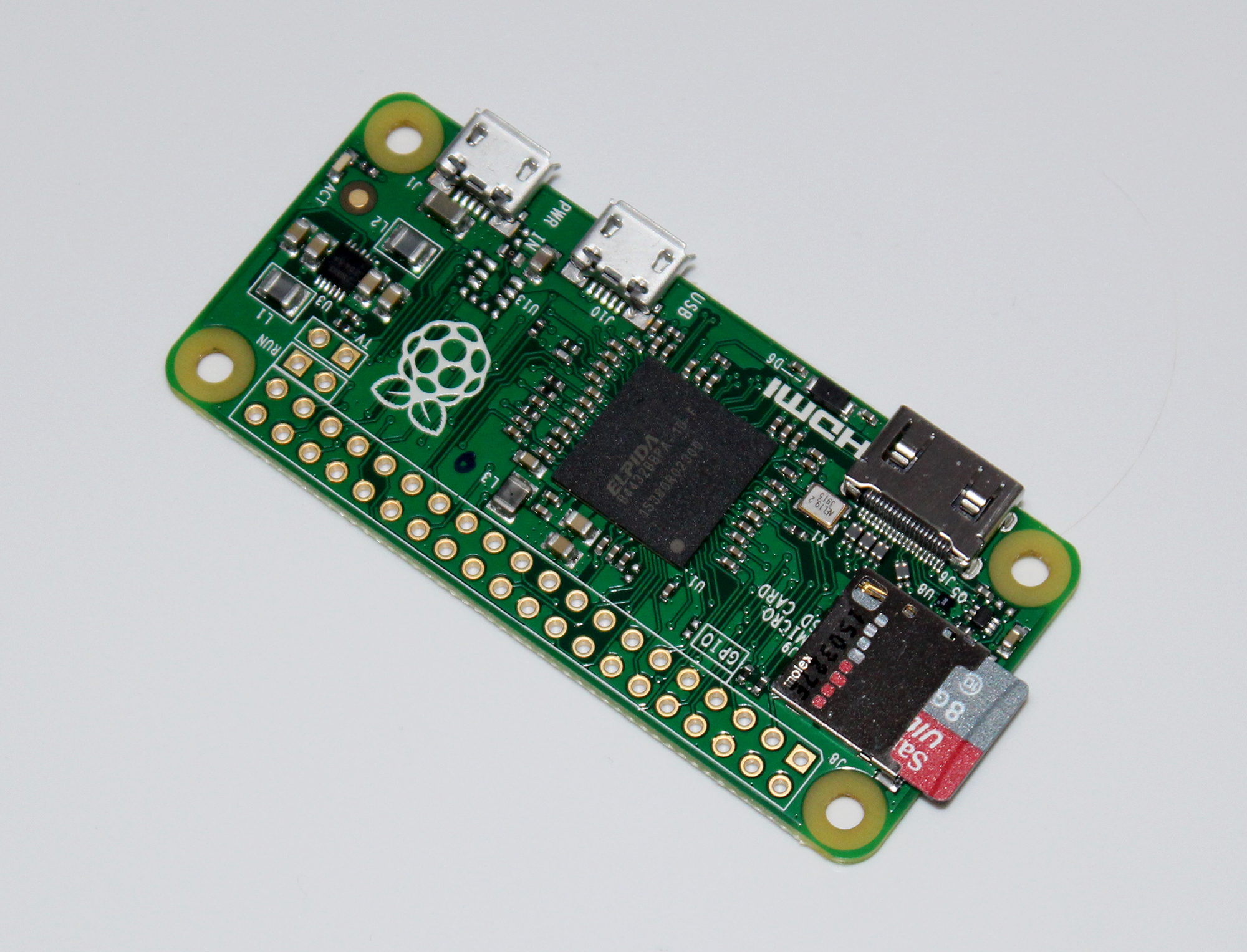
It’s no surprise that the Raspberry Pi Zero was such a hit. Priced at just $5, the tiny uncased device sold out immediately, and despite occasional reappearances at retailers like The Pi Hut, it’s remained ever-elusive.
If you haven’t yet managed to get your hands on the Pi Zero, the good news is it will soon be back in stock, and in much greater numbers than before. And that’s not the only welcome news. The restocked device will be packing a much requested new feature.
SEE ALSO: How to find and buy the ever-elusive $5 Raspberry Pi Zero
As to what this new feature is, Raspberry Pi Foundation’s CEO Eben Upton isn’t currently saying, but if you’re hoping for the introduction of Wi-Fi he confirms it’s not that, sorry.
The Pi Zero’s production was temporarily halted at the Welsh manufacturing plant when focus switched to producing the Raspberry Pi 3, but from next Monday work will start on cranking out 250,000 new Pi Zeros, and that’s just the start. The plan is to produce at least 50,000 more Pi Zeros a month for the rest of the year.
Expect to see stock in usual Pi Zero stores, including The Pi Hut, Adafruit, Pimoroni and Micro Center, in the next fortnight or so.
What do you think the new feature will be? Leave your thoughts in the comments below.
-

Can Microsoft's online demo persuade you to upgrade to Windows 10?
Publié: avril 13, 2016, 8:52pm CEST par Wayne Williams
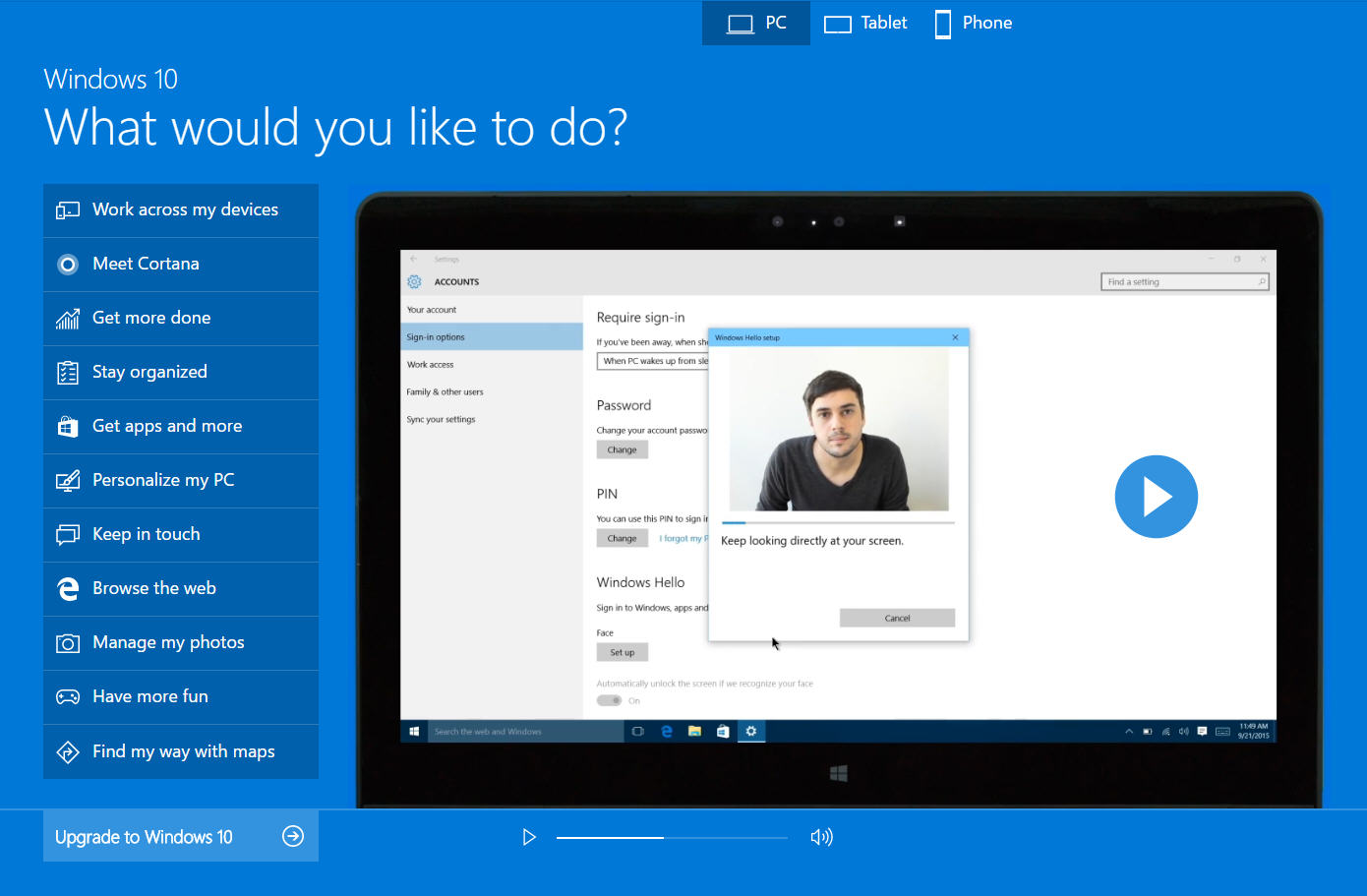
Microsoft is doing its best to persuade users of Windows 7 and 8.1 to upgrade to Windows 10. Having seen reasonable -- but not outstanding -- upgrade numbers as a result of aggressively ramming the new OS down users’ throats, the software giant is now trying to sell the benefits of Windows 10 to those customers still on the fence.
An online Windows 10 demo covering PC, Tablet and Phone lets users see the new OS in action, and gives them the opportunity to upgrade if they like what's on offer.
Select a device type at the top, and then pick a category you’re interested in from the list down the left hand side. Options for the PC are:
- Work across my devices
- Meet Cortana
- Get more done
- Stay organized
- Get apps and more
- Personalize my PC
- Keep in touch
- Browse the web
- Manage my photos
- Have more fun
- Find my way with maps
Once you’ve selected one of those you can choose a particular area you’re interested in, and the relevant video will play on the right.
If you want to know how to "get more done", for example, the demo will show you how to mark up and share web pages, work on the go, work hands free, take notes with you, and instantly unlock your PC.
Should the videos do their job of convincing you to upgrade, you can do so by clicking the Shop Now button on the site.
You can try the demo here.
What do you think? Are you tempted to upgrade, and if not, what's holding you back?
-

Kindle Oasis is Amazon's lightest and brightest e-reader yet
Publié: avril 13, 2016, 4:22pm CEST par Wayne Williams
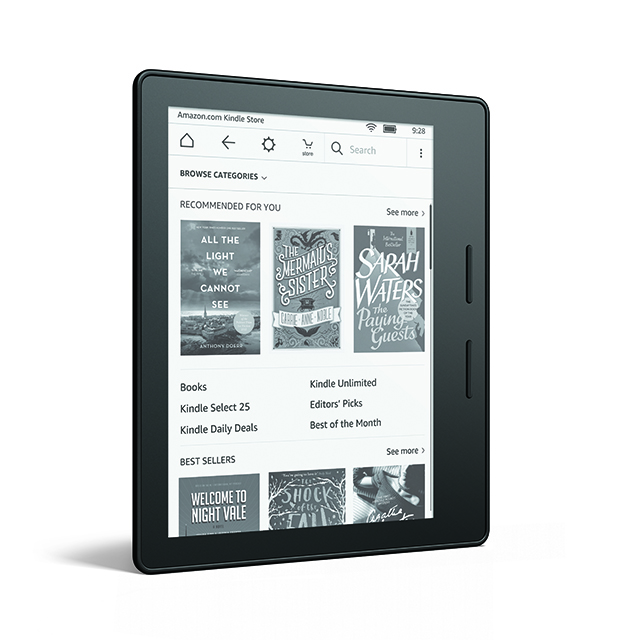
Tablet manufacturers are forever trying to deliver the lightest and thinnest products, and today Amazon introduces a new Kindle which is designed to feel almost weightless.
The Kindle Oasis isn’t simply light, weighing in at just 131 grams, it’s also very thin, at just 3.4 mm at its slimmest point. That makes it 30 percent thinner on average than any other Kindle. It also offers an ergonomic grip to shift the center of gravity to your palm, making it perfect for reading one handed. The built-in accelerometer automatically detects whether you are reading left or right handed, and rotates the page and page turn buttons accordingly.
The lightness of the new device has been achieved by using a featherweight polymer frame that has been reinforced using structural electroplating, so it shouldn’t be bendy.
"To lean back and read for hours, you need a sanctuary from distraction", said Jeff Bezos, Amazon.com Founder and CEO. "We want Kindle to disappear, and Kindle Oasis is the next big step in that mission. It’s the most advanced Kindle we’ve ever built -- thin and ultra-lightweight, it gets out of the way so you can lose yourself in the author’s world".
The thing about Kindles is they already have an incredibly long battery life, but the Oasis comes with a dual-battery system to expand this even further. There’s a battery in the cover, as well as in the device itself, so you can enjoy months of battery life before needing to charge it, and a new hibernation mode minimizes power consumption when your Kindle is inactive.
The cover is made of high-quality leather and available in black, merlot, or walnut.
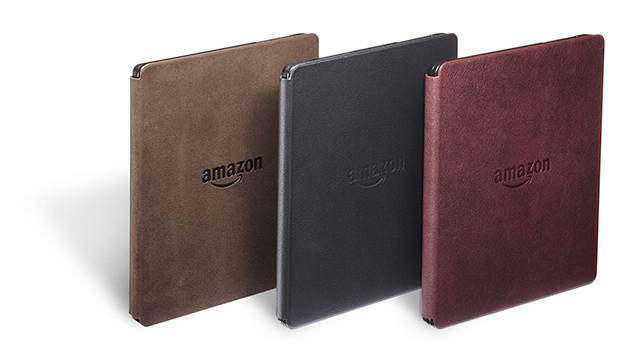
The Oasis has the same quality display as the Paperwhite, delivering crisp high-resolution 300 ppi text, and a redesigned front light includes 60 percent more LEDs to make the display as bright as possible.
The new Kindle Oasis is priced at $289.99/£269.99 and will be released on April 27.
-

10 hidden Facebook features you should know about
Publié: avril 13, 2016, 3:22pm CEST par Wayne Williams
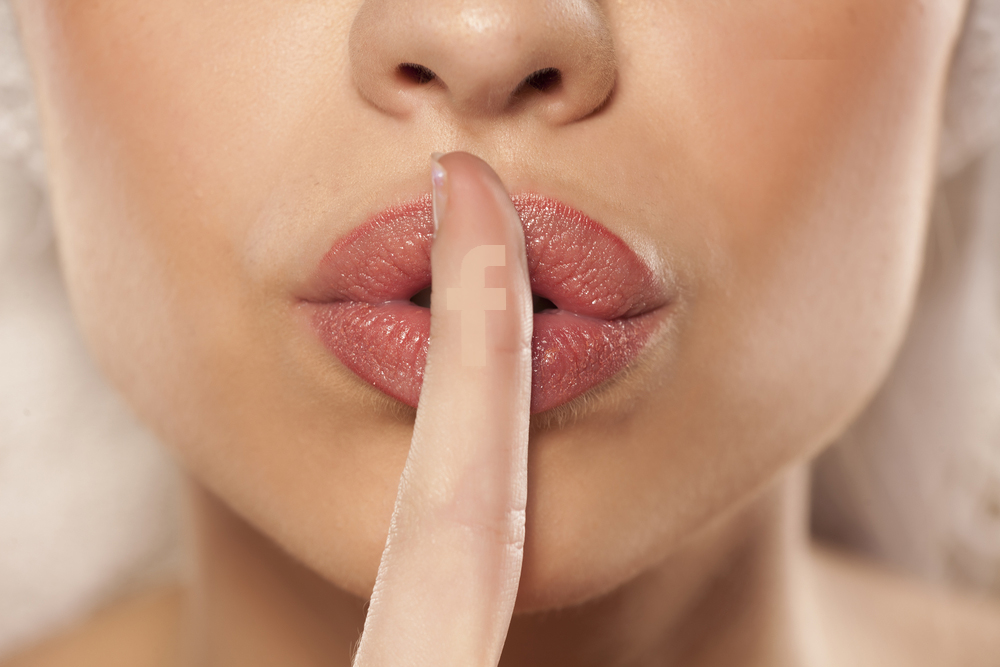
I know plenty of people who -- literally -- spend their lives on Facebook, sharing everything they do, and obsessively reading and reacting to every post made by their friends.
But here’s the thing. Despite all of the hours they put into being on the site, they probably only know a fraction of what it has to offer. There are a lot of features tucked away that they -- and you -- might never encounter. Think you know Facebook? Think again...
There’s a Hidden Facebook Inbox
This is something we’ve covered previously, but Facebook occasionally filters messages that have been sent to you into a hidden folder. This secret inbox is essentially a spam folder, but will probably contain messages from people you know or pages you’ve liked. Follow the instructions here to access the folder and see the messages you've been missing.
You Can Still Poke People
You probably haven’t done this in years -- if ever -- but the ability to "poke" people (one of the original Facebook features) still exists, although it’s a little tucked away now.
To Poke someone, go to their profile page and click the ellipses (...) next to the Message tab and select Poke.
There’s a Hidden Chess Game in Messenger
As well as chatting to friends in Facebook Messenger you can challenge them to a nice game of chess.
To start a new game just type @fbchess play during a conversation. A board will appear and your opponent will go first.
The commands you need to play are detailed here.
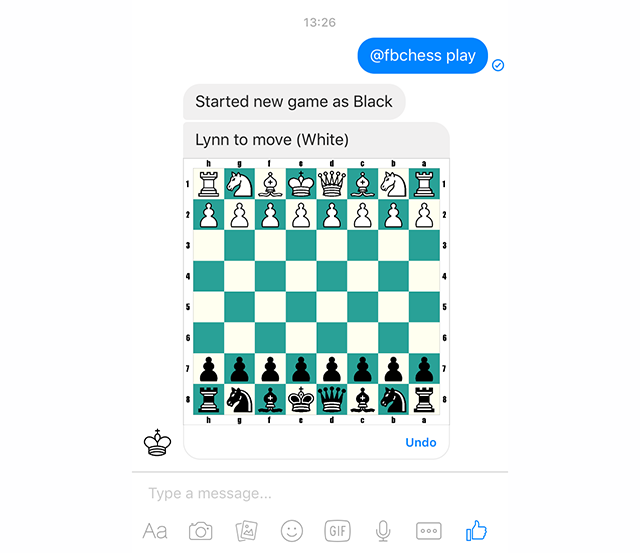
There’s a Hidden Basketball Game in Messenger
Chess not your thing? Don’t worry, there’s another game you can play in Messenger -- basketball! To activate this, you just need to send a basketball emoji to someone, tap it in the chat window, and the game will start. You’ll find more details on the game here.
You Can Use Dropbox to Share Files
Facebook Messenger has gained Dropbox support this week, so you can now share content through that cloud service. All you have to do is tap the More button in Messenger for iOS or Android, and you'll see Dropbox as an available source. You will need to have Dropbox installed as well though.
You Can Log Out Remotely
Logged into Facebook on a friend’s computer, and forgot to log out again? You know what that means right? They’ll post status updates in your name, and react to posts you would never, ever, normally react to. Fortunately, it’s easy to log out of that location remotely.
Open up Facebook’s web interface, click the down arrow at the top right and select Settings > Security > Where You're Logged In. Find the place(s) you don’t want to be logged in at and click the End activity link.
You Can Secretly Unfriend Someone
Bored by a Facebook acquaintance’s tedious (or odious) postings and comments? You can simply unfriend them but if they find out, they might be annoyed, and that could lead to all sorts of problems.
Thankfully, Facebook lets you unfollow people. This stops them appearing in your timeline, but still lets you see what they’re up to (creep them) if you so wish.
To unfollow someone, hit the Following button on their page and select Unfollow.
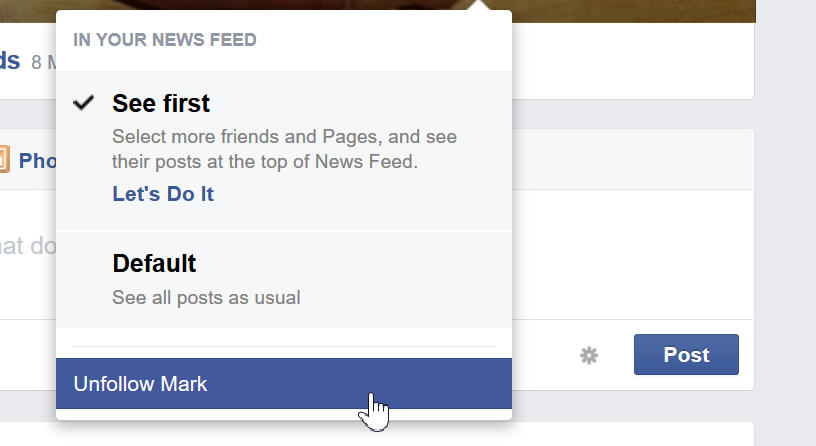
You Can Change the Language Settings to Something Amusing
Facebook in English is boring right? Well there are plenty of other languages you can switch to instead. Go to Settings > Language and click on Edit. Obviously, if you don’t speak Mandarin Chinese you might not want to go for that, but you can switch to Pirate or Upside Down English.
View Your Relationship Over the Years
You can see what you’ve got up to with your significant other over the years by going to www.facebook.com/us. This will display all of the shared and tagged content that includes you both.
Save a Post For Viewing Later
Want to read a post on Facebook but don’t have time right now? You can save it for later. Click the down arrow at the top-right of the post and click Save link. This will send the story to your Saved folder which appears in the sidebar on the left.
Photo Credit: Vladimir Gjorgiev/Shutterstock
-

Microsoft adds troubleshooting QR codes to the Windows 10 Blue Screen of Death
Publié: avril 12, 2016, 2:24pm CEST par Wayne Williams
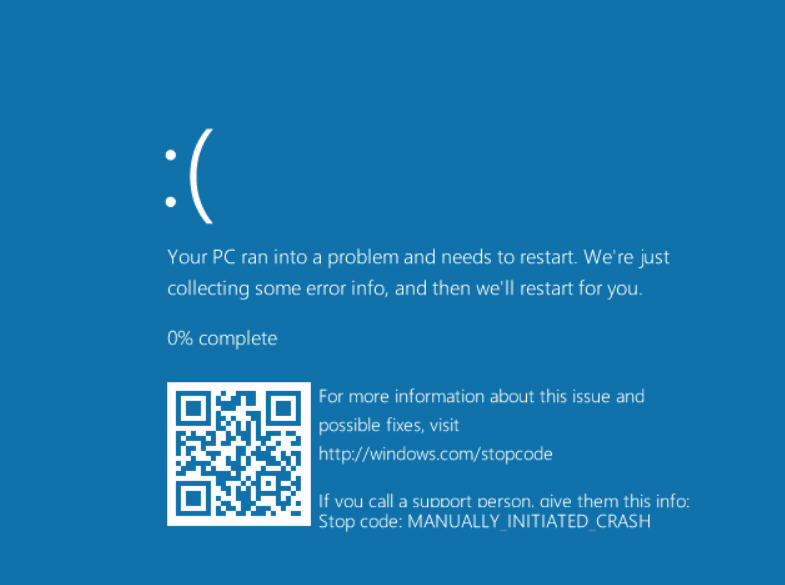
No one enjoys seeing a Blue Screen of Death (BSOD) in Windows. It can be incredibly frustrating, especially if you were right in the middle of something important when it occurred, and you have no idea what caused it.
Armed with the information on the blue screen, and the stop code, you should be able to track down a cause and possible solution on the web, but this does require you to jot down the necessary details. However, that chore is likely to soon be a thing of the past.
Microsoft is tweaking the blue screens in Windows 10 to include a QR code that you can scan with your phone. This will take you to a web page with more information about the problem.
This new addition is to be found in blue screens in the latest Windows 10 preview, Build 14316.
If you experience a BSOD in the new build you'll discover the displayed QR code will currently take you to a page on troubleshooting blue screen errors (try scanning the image above). In future builds, and of course the Anniversary Edition out in July, the codes will redirect you to troubleshooting pages relevant to the problem you encountered.
-

Microsoft introduces a new luxury Signature Type Cover for Surface Pro 4
Publié: avril 12, 2016, 12:56pm CEST par Wayne Williams
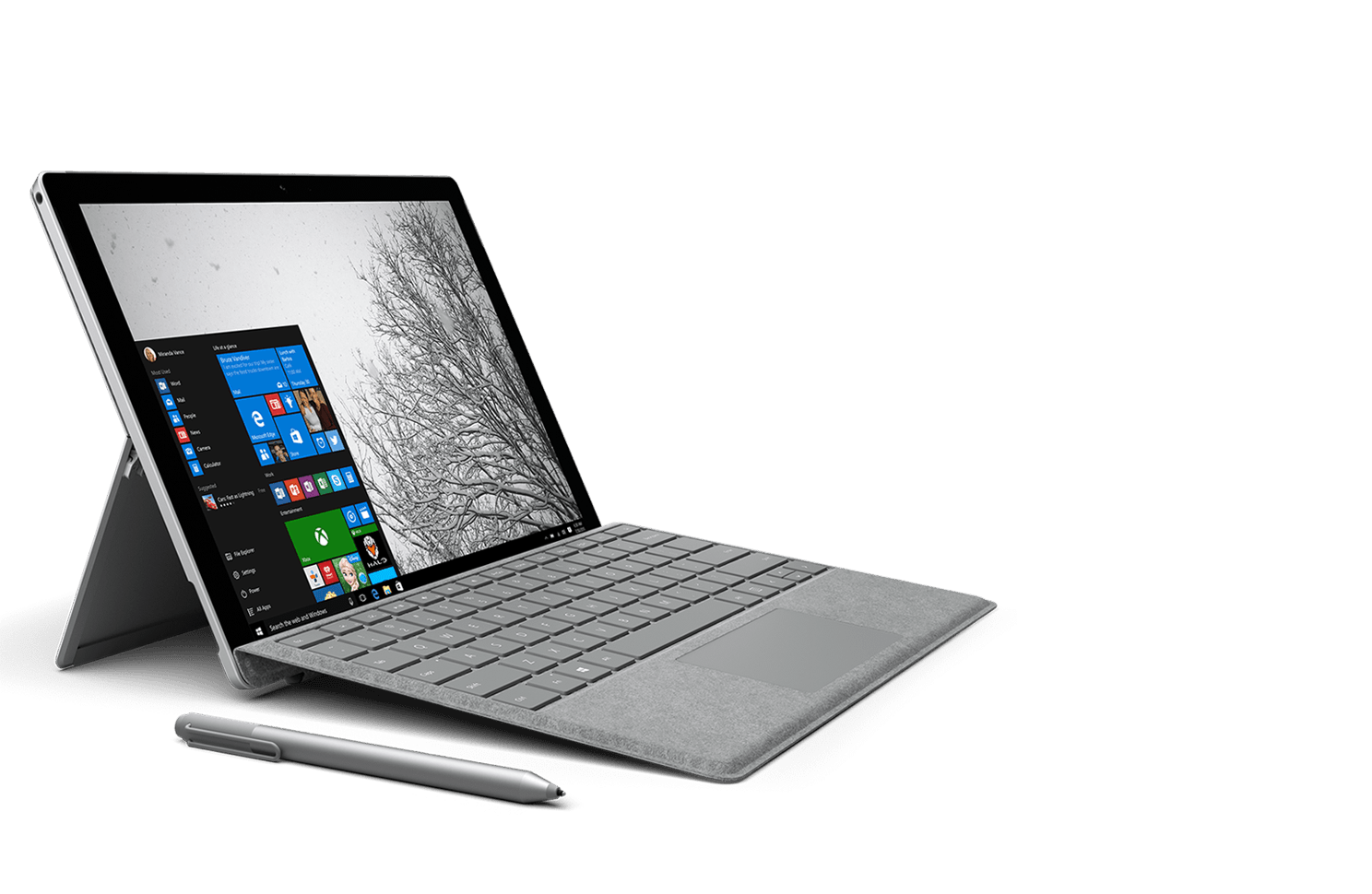 Alcantara is a soft, suede-like material made in Italy that’s used in high-end luxury products. It’s often to be found in car, aircraft and yacht interiors because it looks great and gets better with age.
Alcantara is a soft, suede-like material made in Italy that’s used in high-end luxury products. It’s often to be found in car, aircraft and yacht interiors because it looks great and gets better with age.Microsoft has used this proprietary material to create a new Signature Type Cover for Surface Pro 4 and, there's no denying, the end result looks incredibly classy. No longer will you be embarrassed by your Surface Pro 4’s existing scuffed and dirty blue cover as you quaff champagne on a long flight home on your personal Lear Jet, trading amusing stories with BFFs Richard Branson and Elon Musk (I speak from personal experience of course).
The new Signature Type Cover is available in a two-tone gray melange style and will work with both Surface Pro 3 and 4.
It weighs 285 grams, and comes with a 1 year limited hardware warranty.
Naturally, it’s not cheap, but you can’t put a price on style. Unless that price is $159.99.
It’s available to buy now.
If you want to find out more about the Signature Type Cover, Microsoft has put together a video which you can watch below.
-

BBC introduces a family-friendly iPlayer Kids app
Publié: avril 12, 2016, 11:36am CEST par Wayne Williams
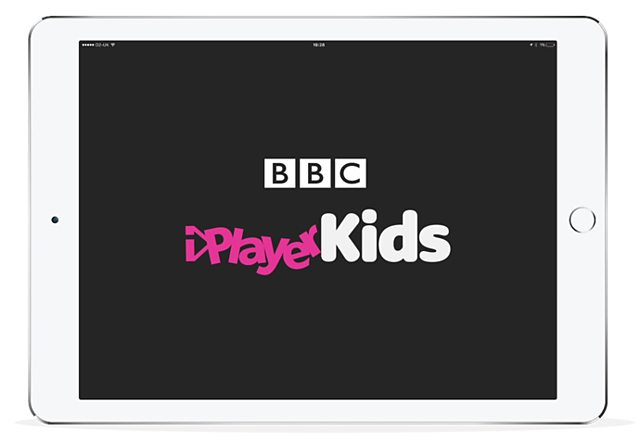
Children enjoy watching streaming video, but a lot of content out there really isn’t suitable for them. This is why Google introduced YouTube Kids, a curated, family-friendly version of the video streaming site.
Following in YouTube’s footsteps, the BBC is today rolling out a version of iPlayer aimed at younger viewers which cleverly filters available content based on the age of the child.
Dan Taylor-Watt, Head of iPlayer, BBC Digital, explains:
Rather than create separate BBC iPlayer apps for CBeebies (which is aimed at children aged 0-6) and CBBC (which is aimed at 6-12 year olds), we decided to create a single app that enables kids to tell the app their age and instantly be presented with content curated specially for their age group. So 6 year olds are able to enjoy a mix of CBeebies and CBBC programmes without having to switch between two different apps.
Of course a family might have multiple children of different ages sharing a single device, so the BBC allows support for up to four profiles.
The Shows area offers full A-Z lists of all CBeebies and CBBC shows available to stream, which amounts to over 1,700 episodes. These can all be downloaded for watching offline, thereby making long car journeys a lot more enjoyable for adults.
There’s a search option available for older users that will automatically filter out content for under fives.
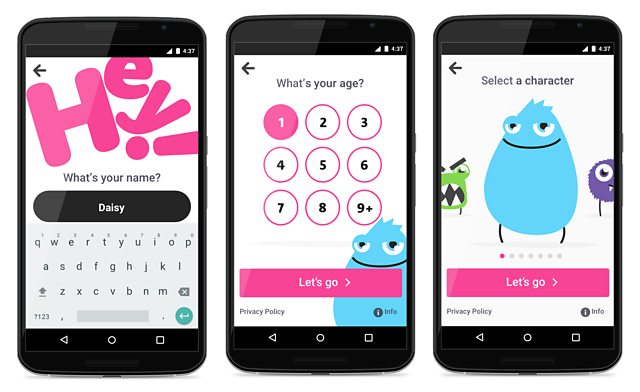
The app also offers accessible features, including universal subtitles and the ability to switch between standard and signed and audio described versions.
BBC iPlayer Kids is available to download now for phones and tablets from the Apple, Google Play and Amazon app stores.
-

How to access Facebook's secret inbox and view messages you never knew you'd received
Publié: avril 8, 2016, 1:09pm CEST par Wayne Williams

Facebook is a great way to keep in touch with friends both past and present. You can post something on another person’s wall, or spark up a chat through Messenger.
For the most part, holding a conversation on the social network is easy. If someone is a friend they’ll be able to send you a private message, and anyone who isn’t currently connected to you will be able to get in touch by sending a message request. But what you probably don’t know is Facebook has a secret inbox which may well contain messages you never even knew you’d been sent.
Accessing the secret inbox is very straightforward but it will depend on what operating system you’re running and which version.
For the web version of Facebook, click on the Messages button at the top of the page, and then click on Message Requests. Clicking on See filtered requests will reveal the hidden inbox and any messages that were sent to you but automatically filtered out of your main inbox by Facebook. This is essentially a spam folder, but will probably contain messages from people you know or pages you’ve liked.
To get to this folder in iOS or Android, open Messenger and tap Settings at the bottom, then tap on People and Message Requests > See filtered requests.
The process for getting here on Android will vary depending on the version of the OS you’re running, but just find People and go from there.
The messages I had in that folder were all from a couple of years ago, but my wife discovered two messages from last year, including one a friend swore she’d sent, but which my wife had never received -- or so she thought.
Photo credit: serafima / Shutterstock
-

Microsoft's Hub Keyboard now available on iPhone, iPad
Publié: avril 8, 2016, 11:22am CEST par Wayne Williams
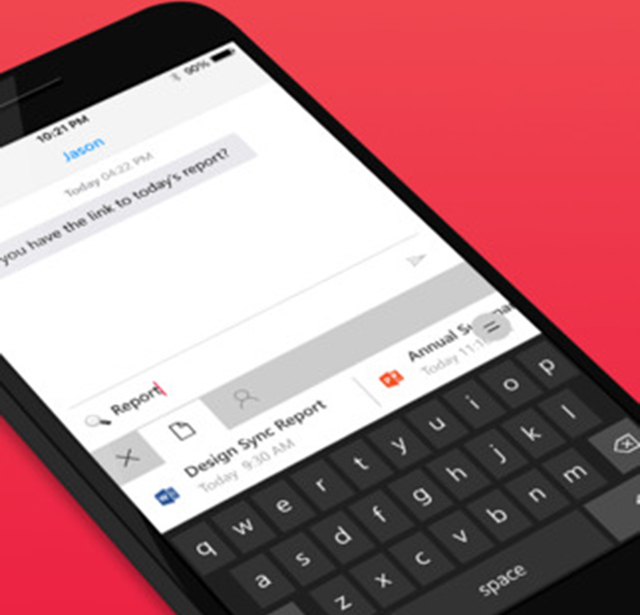
Microsoft continues to bring out apps for rival mobile operating systems that aren’t available for Windows Phone.
Its Hub Keyboard, which was first released for Android back in February, is now available for iOS and makes it easy to access content from other apps. It also offers Office 365 integration.
Installing Hub Keyboard is the same as installing other keyboards on iOS. Navigate to Settings > General > Keyboards > Add New Keyboard, and select Hub from the list.
Microsoft describes the new app like this:
Isn’t it painful to switch between apps just to complete your routine on-the-go tasks?
Hub Keyboard, a Microsoft Garage project, lets you stay in context by bringing information from different services to your fingertips and help complete your tasks faster. Sign in with your Office 365 work or school account to unlock access to more information.You can use it to access docs and contacts straight from the keyboard, as well as most recently used content. You can also search for what you need.
Hub Keyboard is currently available in English for the US and UK markets but Microsoft is working on adding more languages and countries.
Download Microsoft Hub Keyboard from the App Store for free.
-

Microsoft bangs another nail in Adobe Flash's coffin with a big change to Edge
Publié: avril 7, 2016, 8:38pm CEST par Wayne Williams
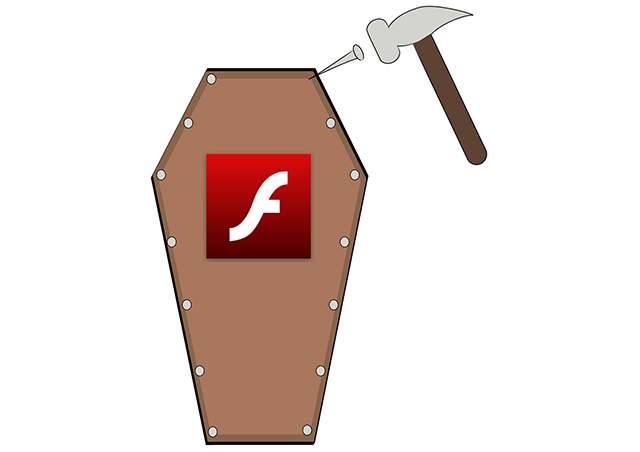
Flash is not as integral to the web as it once was, but it’s still required for some content, despite being a huge security nightmare.
Microsoft, like Google and Mozilla, wants to hasten the transition away from Flash to a more modern, standards based web, and so plans to make a big change to Edge in the forthcoming Anniversary Update to Windows 10.
SEE ALSO: Windows 10 Insider Preview Build 14316 arrives on the Fast ring -- packed with exciting new features
According to John Hazen, Principal Program Manager Lead, Microsoft Edge, the future build of Microsoft’s new browser will "intelligently auto-pause content that is not central to the web page".
Essentially, what this means is any vital Flash content -- like video and games -- will play as normal, but "peripheral content", like Flash animations and ads, will be automatically paused. If you want to activate them you can, but it will be your choice.
Taking this action will, Hazen observes, significantly reduce power consumption and improve performance, while preserving the fidelity of the page.
Pausing non-essential Flash content is just the start for Microsoft. The software giant intends to roll out additional controls in the future, offering users complete control over all Flash content.
"We are planning for and look forward to a future where Flash is no longer necessary as a default experience in Microsoft Edge", says Hazen. And, for most web users, that day couldn’t come soon enough.
Photo credit: WilleeCole Photography / Shutterstock
-

Apple could soon censor swearing in your music collection
Publié: avril 7, 2016, 6:05pm CEST par Wayne Williams

As the parent of a young child I often have to give some serious thought as to what music I play in the car when she’s with me, in order to avoid accidentally exposing her to a song peppered with swear words.
This problem could soon become a thing of the past however, as Apple has patented a method of using software to automatically censor swearing in music and audio books.
The patent, titled "Management, Replacement and Removal of Explicit Lyrics during Audio Playback" was filed by Apple in September 2014 and granted last week. The system works by identifying offensive words in audio and replacing them with alternative sounds -- bleeps for example -- or silence.
As well as censoring explicit songs and audio books, the technique could also be used in YouTube videos.
iPads are very popular with children and it’s easy to see how teachers and parents could benefit from such a system.
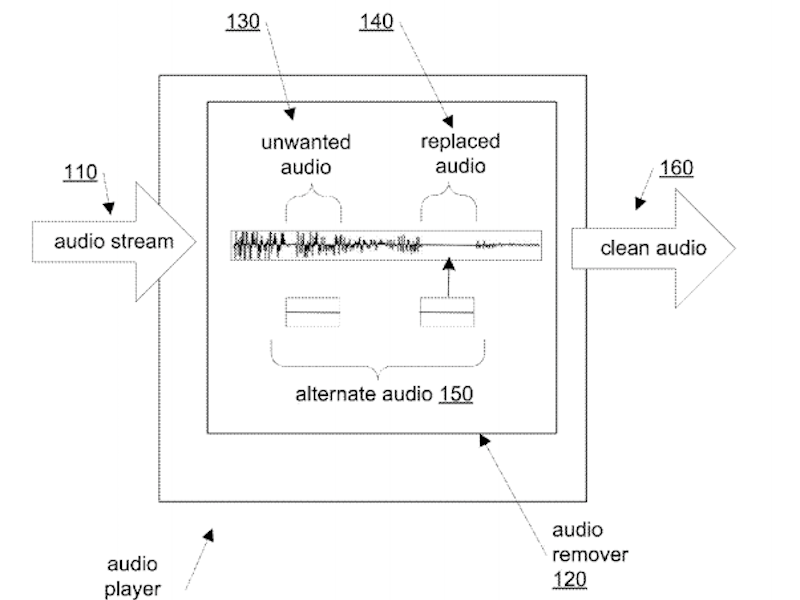
Apple files a lot of patents, many of which never amount to anything, but there’s a good chance we’ll see something that uses this censoring technique in the near future.
-

Windows 10 Insider Preview Build 14316 arrives on the Fast ring -- packed with exciting new features
Publié: avril 6, 2016, 8:20pm CEST par Wayne Williams
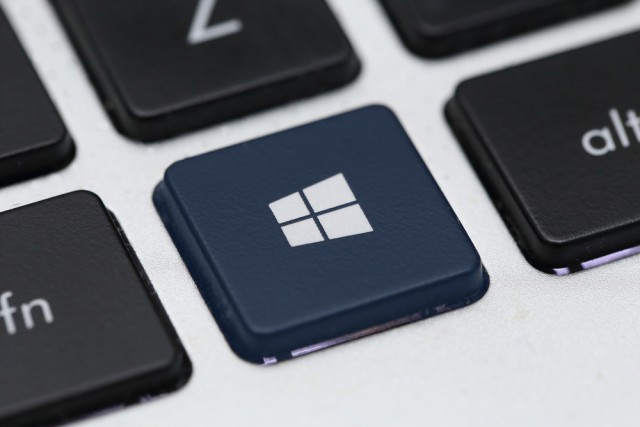
Windows 10 Insider Preview builds -- well those on the Fast ring at least -- tend to fall into two camps. There are the exciting releases, like Build 14291, which delivered extensions to Microsoft Edge as well as various other new features, and the duller ones, like Build 14295, which mostly fix bugs and shore up things.
The latest new build for the Fast ring, Build 14316, falls very much into the former camp, with Microsoft introducing lots of new features for Insiders to try, in addition to plenty of welcome improvements across the whole of the OS. Here’s what new.
As announced last week at Build 2016 (that’s the event, not an Insider Preview release!) you can now natively run Bash (a Unix command line tool often used on Linux) in Windows. In order to do this though you’ll firstly need to turn on Developer Mode. Go to Settings > Update & security > For developers and search for Windows Features. Select Turn Windows features on or off and enable Windows Subsystem for Linux (Beta). To install Bash, open a Command Prompt and type bash.
You’ll find more details on the new feature here.
If Bash doesn’t excite you -- and it certainly isn’t for everyone -- the new build also introduces some cross-device features for Cortana. If you have multiple devices running Windows 10, or a smartphone with Cortana installed (Windows 10 Mobile, or Android), these additions will help keep things in sync.
The new features are low battery notifications, find my phone/ring my phone, and the ability to share map directions across devices.
Microsoft has released three videos explaining how these work.
Low Battery Notifications
Find my phone/Ring my phone
Share map directions across devices
Microsoft has also made it easier to set up Cortana and, naturally, there’s a video covering this too, but it’s currently private. We’ll update this article with the embedded video once Microsoft makes it publicly available.
Having released extensions for Edge two builds ago, Microsoft introduces some additional extensions in this build -- Pin It Button and OneNote Clipper. It also updates the first three extensions -- Reddit Enhancement Suite, Mouse Gestures, and Microsoft Translator.
As before, to get these working, click on the ellipses (…) at the top right in Edge, then click Extensions. In the Extensions pane click Get extensions.
In the new build you can now universally toggle between dark and light modes via Settings > Personalization > Colors. This will affect all apps with dark and light themes.
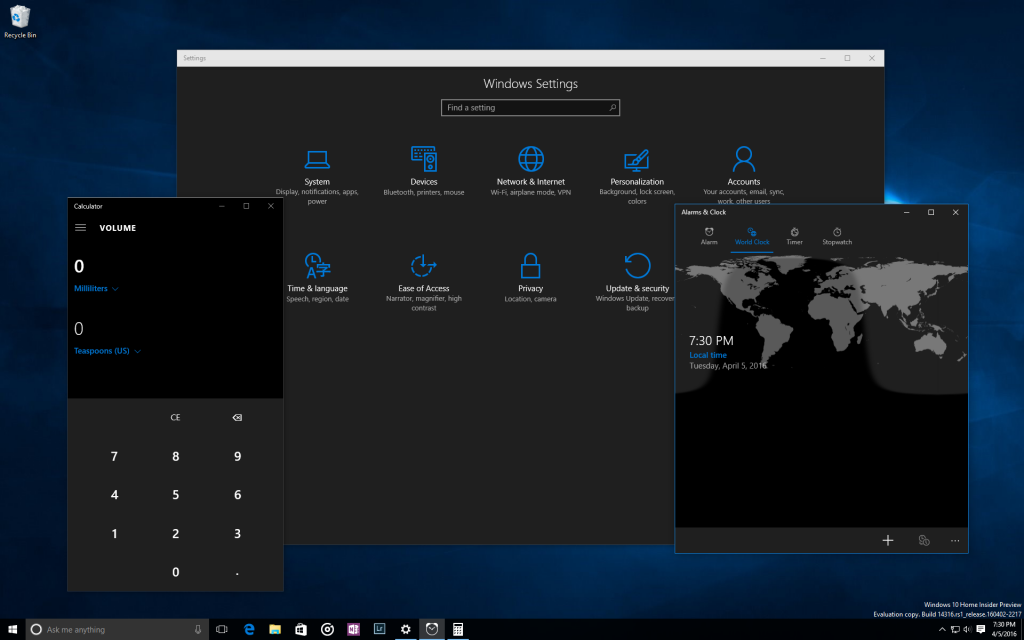
There’s also a new option to show color only on app title bars. Configure this through Settings > Personalization > Colors.
And that’s still not all. There’s a Skype UWP Preview app available to try out, Action Center improvements which include the ability to prioritize app notifications, Virtual Desktop Improvements (you can now pin windows open across desktops) and some updated Emoji.
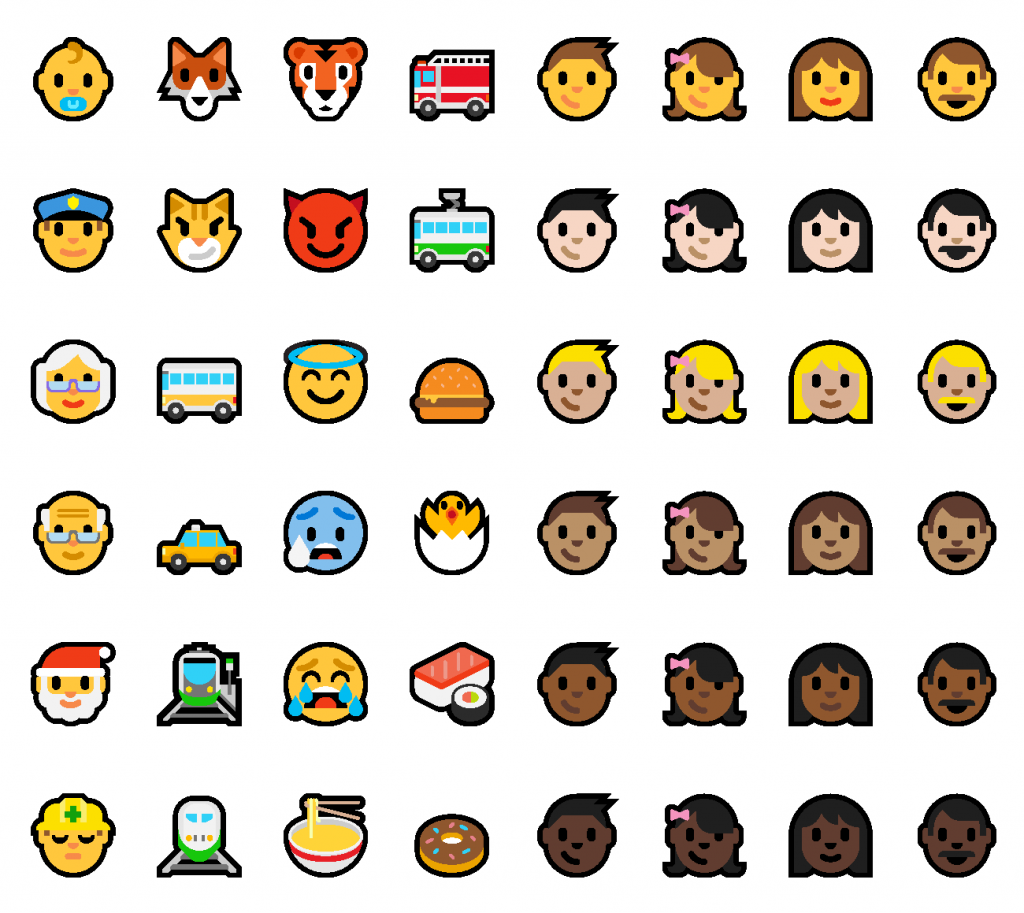
What, you want more features?
Ok, there’s also a new Update Progress Experience -- you’ll see this when you update your build -- and updated battery settings and battery saving experiences too. Windows Update now lets you tell the OS when you’re at your busiest, so it won’t attempt to install any updates between the specified hours.
Finally commenting in the Feedback Hub has been introduced in this new build too.
As well as all these new features and functionality, the build fixes a bunch of problems including:
- The issue where on some PCs with TPM chips, such as the ASUS Zenbook UX31, you may have experienced glitchy audio and jumpy movement when using the trackpad due to the "tpm-maintenance" task running constantly in the background instead of once per boot-up like it should.
- The issue where if you use Hyper-V and have a Virtual Switch configured for your network adapter, you might see an error indicator (red-colored "X") for your network adapter in the notification area of your taskbar.
- Polished the Wi-Fi flyout UI and fixed an issue where text entry into a Wi-Fi password field was noticeably top-aligned rather than centered.
- Fixed an issue for where when using multiple monitors and full-screen apps like PowerPoint or Remote Desktop would crash Windows Explorer.
- Fixed an issue where Cortana wasn’t showing Settings pages in the search results.
- Updated the Windows Update notification after updates have been installed so now clicking on the notification will take you straight to your update history.
- Fixed an issue where desktop (Win32) apps pinned to the Start menu would sometimes move after updating to a new build.
- Fixed an issue where "Update and Restart" and "Update and Shut Down" wouldn’t start an update.
Naturally, with this being a Fast ring release there are a fair few known problems to be aware of:
- The Visual Studio emulator for Windows 10 Mobile and Hololens will fail with "An authentication error has occurred. The Local Security Authority cannot be contacted". If you are a developer and require the emulator for building apps, we suggesting moving to the Slow ring and skipping this build until we can fix this issue.
- We continue to investigate issues with Narrator and other screen reader apps that make them unable to read selected text in the Feedback Hub, Cortana, and other apps.
- In Microsoft Edge, some large downloads may appear to get stuck at 99% completion. You can work around this issue by renaming the file in your downloads after closing Microsoft Edge. This workaround skips security checks on the file, so it should be used only with files from a trusted source.
- In some cases, attempting to turn on Developer Mode on may crash the Settings app. If this happens, the workaround is to use these steps here to enable Developer Mode.
- Some apps notifications may only show the icon -- however the full text of the notification will be visible within Action Center.
It's clearly full steam ahead as Microsoft prepares for the big Anniversary Update this summer.
Photo credit: charnsitr / Shutterstock
-

Twitter now offers an easier way to share public tweets privately
Publié: avril 5, 2016, 7:08pm CEST par Wayne Williams
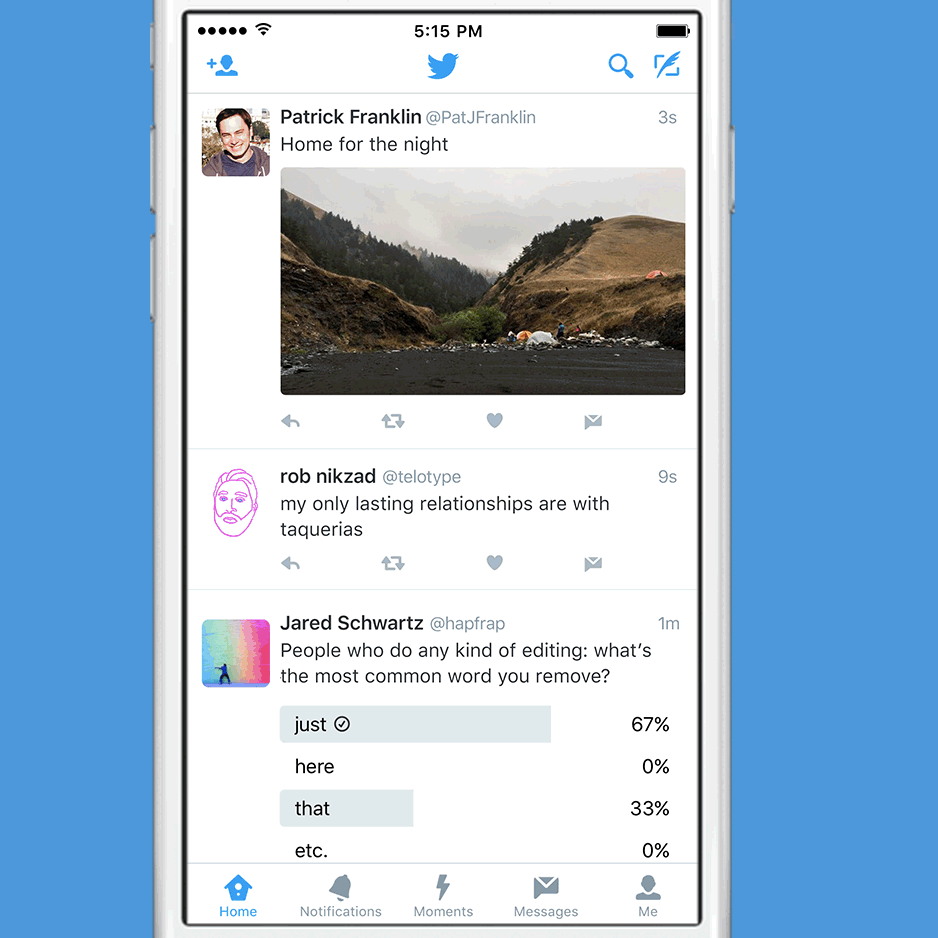
While Twitter is designed to provide an open forum for your thoughts, occasionally you might want to have one-to-one discussions in private, and that’s where the Direct Message option comes in.
Today, as part of its quest to make DM conversations "richer", Twitter introduces a feature to make it much easier to share public tweets privately with friends and followers.
Twitter users on iOS and Android will soon start to see a new Message button under tweets that you can tap to quickly share that post in a DM.
Twitter says tweets being shared via DMs is becoming increasingly popular:
Every day, millions of people send Direct Messages to communicate privately with friends, family, experts, brands, and anyone else they find interesting on Twitter. In fact, we’ve seen the number of messages sent grow over 60% in 2015. And the number of Tweets shared privately has grown even faster, at 200% in just the second half of last year.
You’ll need to update your app to see the new button.
-

iPhone 6s security flaw lets anyone bypass the passcode and access contacts and photos
Publié: avril 5, 2016, 2:22pm CEST par Wayne Williams
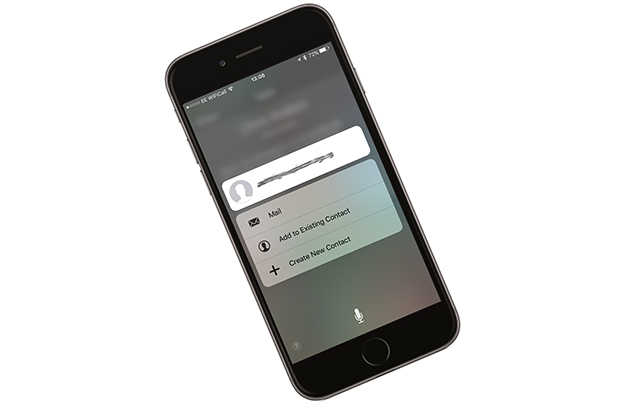
It might have taken the FBI quite some time to find a way to unlock a shooter's iPhone 5C, but it turns out to be trivially easy to access contacts and photos stored on the company’s newest flagship, the iPhone 6s.
The trick makes use of Siri and Twitter, and as the owner of a 6s I’ve been able to test this method myself, and can confirm not only that it works, but it’s very simple to implement.
It does require the use of 3D Touch, so if you have an older iPhone you don’t need to worry.
To use the trick, discovered by Jose Rodriguez, you just need to launch Siri from the lockscreen and ask her to search Twitter for an email address. Using a phrase like "Hey, Siri, what's trending on Twitter with an email address?" worked for me. Once one is found, press down hard on the address to call up the 3D Touch context menu from which you can create a new contact or add to an existing contact.
Not only does this give the attacker access to all of your contacts, but if the Contacts app has permission to access the iPhone’s photo library, they can then also explore your snaps by adding a photo to a new or existing contact.
You can watch a video of the trick in action (in Spanish) below.
It’s possible to protect yourself from an attacker viewing your photos by denying Siri and Contacts access to your image library. Go to Settings > Privacy > Photos and disable the option there.
You can also prevent access to Contacts from the lockscreen by going to Settings > Touch ID & Passcode and disabling Siri there.
You could, of course, also just ensure that no one picks up and uses your phone without your knowledge.
-

Get loads more free space on your Apple iPhone with this one weird trick (seriously)
Publié: avril 1, 2016, 8:02pm CEST par Wayne Williams
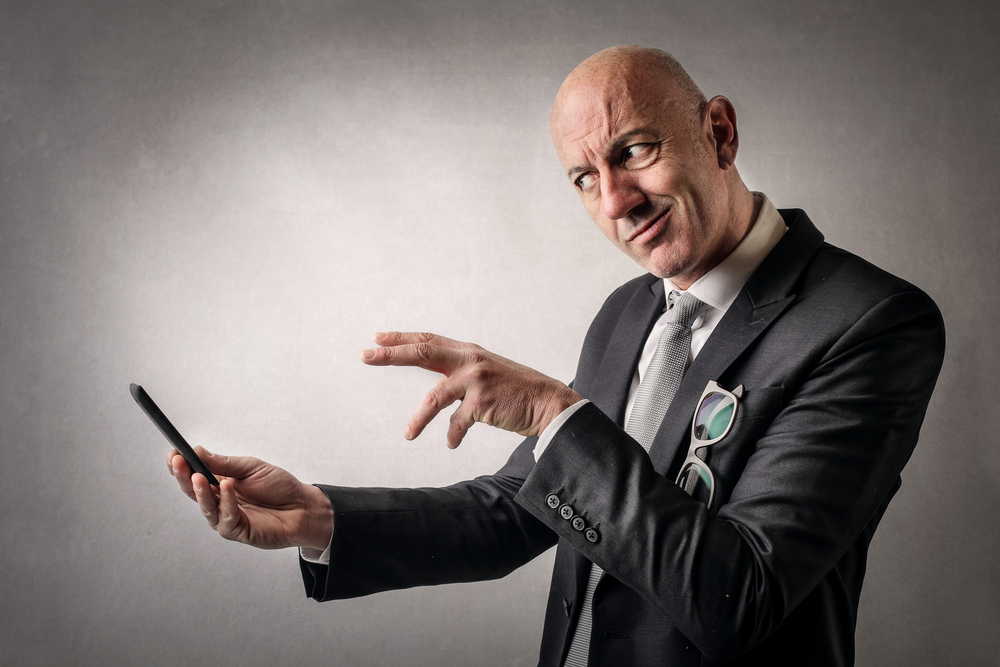
I have to apologize upfront for employing such a well-known clickbait-style headline, but I’m genuinely about to show you how to immediately reclaim a lot of free space on a nearly full Apple iPhone using a weird trick. It’s not an April Fool’s either.
If you have an iPhone that’s close to running out of space, you can use this method to free up a sizable amount of storage. On my iPhone, which was filled to bursting with vacation photos, music and apps I managed to claw back a couple of gigabytes, which is some going.
The trick only works on an iPhone that’s very low on space. What you need to do is note how much storage you have remaining by going to Settings > General > Usage, and then try to rent a movie from iTunes that is larger than the storage you have available. If you have 500MB free, for example, you could try and rent Bridge of Spies, which is a 5.79GB download.
You have to try to rent the film through the iTunes app on your phone, not through iTunes on your PC or Mac. Unless you actually want to watch the film that is.
When you click Rent, a loading symbol will appear but then you’ll receive a message informing you that "there is not enough available storage" to download the film, and you’ll be given the option of managing your storage in Settings.
Tap the Settings button, and -- ta-da! -- you should see the amount of free storage you now have is much greater than before. Repeating the process will free up even more space.
According to this Reddit post, it seems what the device is doing is deleting unnecessary files from installed apps in an effort to free up the room you need to install the movie.
Don’t worry though, even if you do manage to free up enough space for the film in question, it won’t be installed. Unless you click on Rent again that is...
Photo credit: Ollyy / Shutterstock
-

Windows 10 is now on nearly one in four Windows PCs and tablets, according to Microsoft
Publié: avril 1, 2016, 7:28pm CEST par Wayne Williams

NetMarketShare today released its latest desktop OS usage figures, and they reveal a steady increase for Windows 10. According to the web analytics firm, the new OS currently has 14.15 percent usage share. However, Microsoft has updated its own market share figures and they paint a very different picture, showing the OS to be a much, much bigger hit.
According to the recently updated Windows and Store trends page, as of February, Windows 10 is on 24 percent of PC and tablet devices running Windows, growing at a pace of around 2 percent a month. And not only that, the new OS is also a huge hit with gamers, with Microsoft claiming Windows 10 is on 35 percent of their devices. So how come Microsoft’s figures differ so significantly from NetMarketShare’s? There are a couple of reasons.
SEE ALSO: Windows 10 continues its slow march to desktop domination
Firstly, NetMarketShare records all operating system usage figures -- not just how many people are using the various flavors of Windows, but also Mac and Linux. Microsoft however, measures Windows market share -- how many people have installed its OS.
Additionally, NetMarketShare focuses on the desktop side of things in its figures, while Microsoft also factors in tablets.
That alone doesn’t explain the gulf -- Microsoft is claiming Windows 10 is on 10 percent more devices than NetMarketShare has recorded -- but the answer for the difference is a simple one. The software giant only includes Windows 10, 8, 8.1 and 7 in its charts -- ignoring XP and Vista as it no longer considers those versions relevant.
If we strip out those two aging Windows editions and all non-Windows systems from NetMarketShare's figures, the result is pretty close to those numbers reported by Microsoft for February.
Microsoft’s share breakdown has Windows 10 on 24 percent, Windows 8.1 on 18 percent, Windows 8 on 3 percent, and Windows 7 on 55 percent.
As Microsoft has claimed Windows 10 is now on 270 million devices, we can use the new percentages to roughly size the market, which suggests there are over 618 million Windows 7 users and 236.25 million Windows 8.x users out there for Microsoft to try to persuade to upgrade to its new OS. Factor in those Windows XP and Vista stragglers, and new PCs and tablets, and getting Windows 10 on one billion devices within the next couple of years might just be possible.
Photo credit: Brian A Jackson / Shutterstock
-

Windows 10 Insider Preview Build 14295 ISOs now available for download
Publié: avril 1, 2016, 5:58pm CEST par Wayne Williams

A week ago, Microsoft released a new Windows 10 Insider Preview build for PC and Mobile. While Build 14295 isn’t the most exciting of releases, it does include a lot of notable bug fixes and Microsoft deems it stable enough for the Slow ring which is welcome news for any Insiders not on the cutting edge.
There’s also good news for anyone struggling to update their existing Insider Preview build through Windows Update (or for anyone wanting to do a fresh install or try out the new build in a virtualized environment) as Microsoft has just made Build 14295 available for download in ISO format.
It’s important to remember, that while Build 14295 is mostly just bug fixes, it follows on from Build 14291 which delivered extensions to Microsoft Edge, as well as pinned tabs and other Edge enhancements. There was an updated Maps app, and a wealth of other changes (including the introduction of a new Feedback Hub) in that build too.
If you’re not currently running Build 14295 you can download the ISOs for it from this link. You’ll need to be a Windows Insider, but you can join the program if you’re not already part of it.
Once you’ve downloaded the ISO you can burn it to DVD or write it to a USB flash drive, and install it.
Photo credit: charnsitr / Shutterstock
-

Windows 10 continues its slow march to desktop domination
Publié: avril 1, 2016, 12:52pm CEST par Wayne Williams

At Build 2016 Microsoft revealed that Windows 10 is now on 270 million devices. By switching the new operating system to a recommended update, the software giant has managed to add 70 million devices to its tally in just under 3 months. An achievement somewhat tainted by the fact that not every upgrade was actually wanted nor knowingly actioned, but that’s still a very respectable number to crow about.
With it being the first of the month, NetMarketShare has released its latest usage figures for the various flavors of Windows and, as you’d expect, Windows 10 shows the most growth.
The new OS had 12.82 percent of the desktop market in February, but gained 1.33 percentage points in March, and now stands on 14.15 percent.
That places it well ahead of its predecessor. Windows 8.1 lost 0.27 percent and now stands on 9.56 percent. Windows 8 actually gained 0.02 percentage points, to put it on 2.45 percent. Combined, the tiled OS dropped 0.25 percentage points and now sits on 12.01 percent, Just over two percent behind Windows 10.
Windows 7 shed 0.45 percentage points, but remains the dominant OS with 51.89 percent. If Windows 10 continues to grow at the same rate it posted in March, and Windows 7 declines by the same percentage, the new OS will overtake the old one in around two years' time.
Of course there are a lot of factors that might influence that including Microsoft finding new and even more aggressive ways to get Windows 10 on to systems, and we still don’t know what the software giant is planning to do regarding pricing once the free upgrade period ends in the summer.
Photo credit: Tamisclao / Shutterstock
-

How to install and use extensions in Microsoft Edge on Windows 10
Publié: mars 18, 2016, 1:15pm CET par Wayne Williams
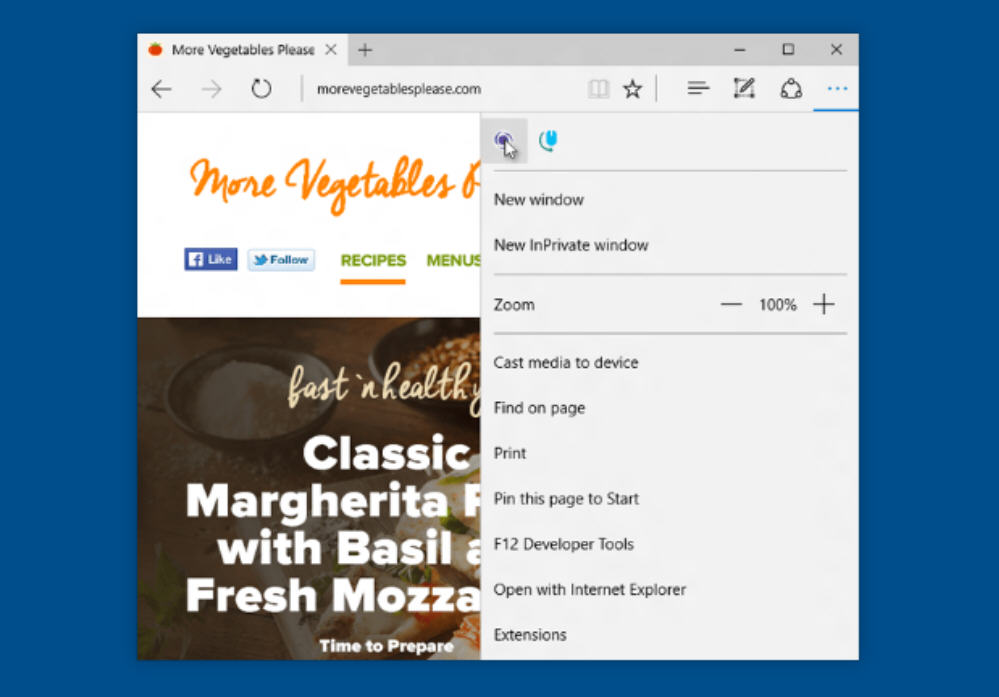
Starting in Windows 10 Insider Preview Build 14291, Microsoft has introduced a selection of extensions for its Edge browser.
While the software giant promises that popular add-ons like AdBlock, Adblock Plus, Amazon, LastPass, and Evernote are on their way, it’s launched the feature with three rather less-exciting offerings -- Mouse Gestures, Microsoft Translator and an early version of Reddit Enhancement Suite.
SEE ALSO: How to fix Microsoft Edge's worst problems
Getting extensions up and running in Edge is currently a matter of clicking the ellipses (…) button at the top right and then clicking Extensions and choosing to Get extensions. A developer resources page will open, and you’ll then need to click the Download extensions button.
Browse the extensions on offer (as there’s only three it won’t take long) and then click the Download button for the one you want. Select Run from the download notification, then click the ellipses in Edge again and select Extensions > Load extension. Select the extension you saved in the Downloads and click Select Folder.
The extension will load and appear as enabled in the sidebar. The Mouse Gestures one also shows shown some information about it in a new tab.
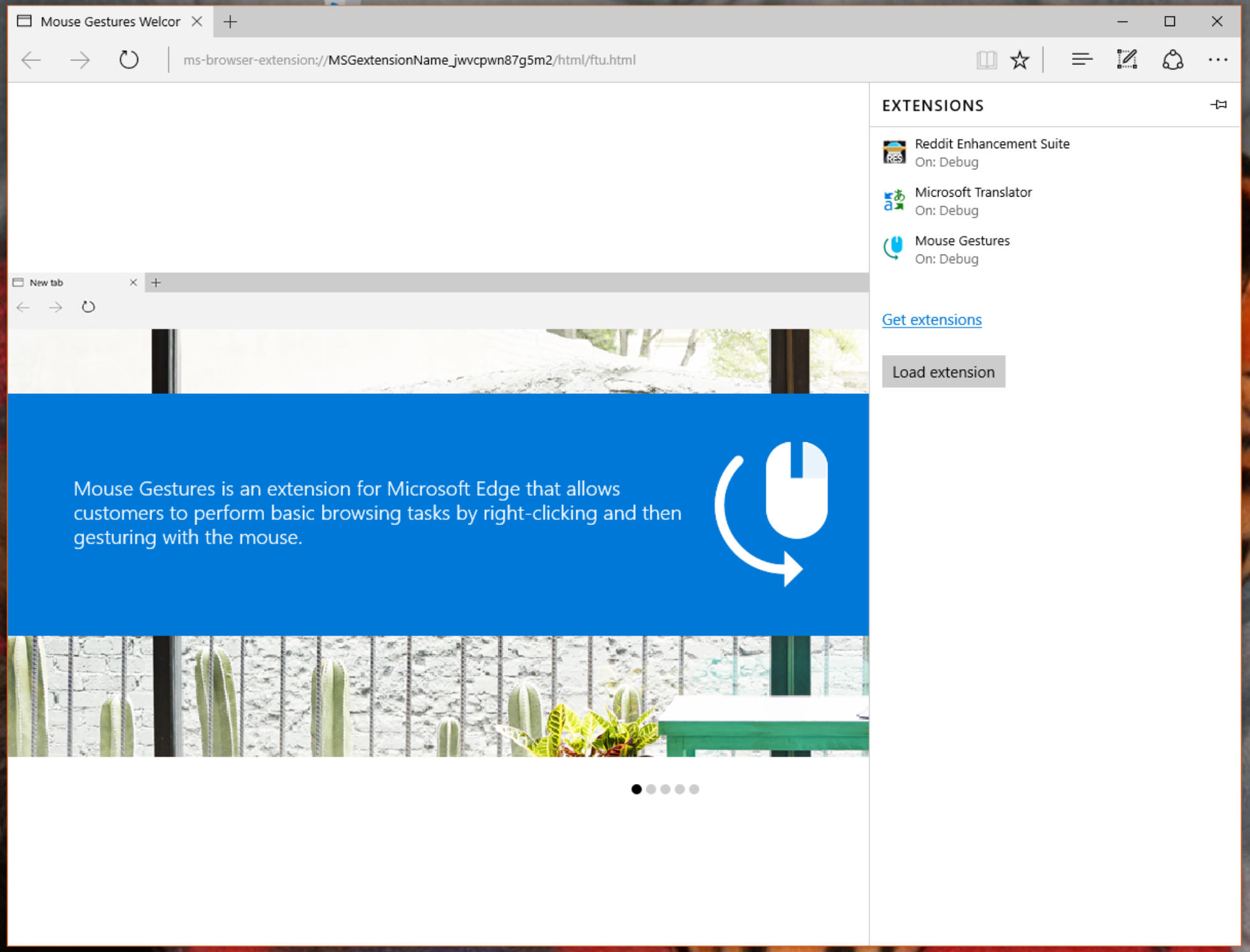
Hover your mouse over an extension to access its settings. For most you’ll just be able to remove unwanted add-ons, although Mouse Gestures also lets you add a button next to the address bar.
It’s reasonably easy to set up extensions, although in the future it will be even simpler as Microsoft intends to offer add-ons through the Windows Store.
What do you think of Edge’s extension support so far?
-

Windows 10 Insider Preview Redstone Build 14291 delivers extensions to Microsoft Edge and other improvements
Publié: mars 18, 2016, 1:18am CET par Wayne Williams

Microsoft is having a very busy Thursday. As well as beginning the long-awaited rollout of Windows 10 Mobile, the software giant has also pushed the button on a new PC build for Insiders on the Fast ring.
Fast ring updates sometimes offer new features, but other times it’s just tweaks to the core and bug fixes. Windows 10 Insider Build 14291 is one the more noteworthy updates, finally delivering the long awaited extensions in Microsoft Edge, as well as pinned tabs and other Edge enhancements. There’s also an updated Maps app, and a wealth of other changes, including the introduction of a new Feedback Hub.
Extension support is of course the biggie and finally gives Microsoft Edge a chance to compete with the likes of Firefox and Chrome. To try out an extension, just click on the ellipses (…) at the top right and then click Extensions. In the Extensions pane click Get extensions.
This is obviously a new feature, so there aren’t many add-ons available at the moment, but you can try out Mouse Gestures, Microsoft Translator (automatically translates pages in over 50 different languages) and an early version of Reddit Enhancement Suite.
More extensions are on the way, including AdBlock, Adblock Plus, Amazon, LastPass, Evernote.
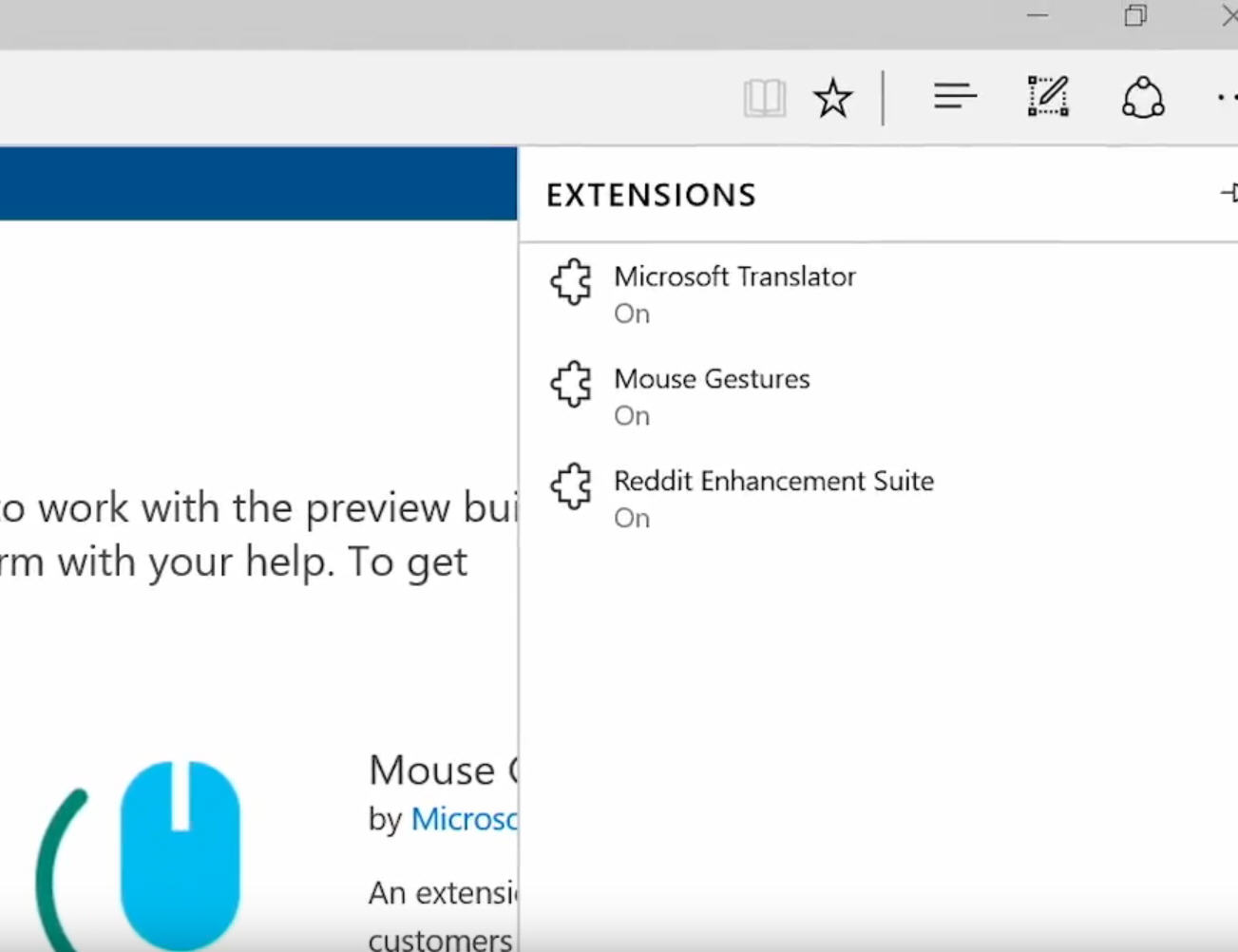
Although extensions currently have to be downloaded and sideloaded they will eventually be made available through the Windows Store.
Edge also now lets you pin tabs so you can have easy access to favorite and regularly used sites. This feature works exactly as you’d expect. To pin a tab, right-click on it and choose Pin tab. To unpin a tab, right-click on it and choose Unpin tab. Pinned tabs don’t show a close button, so can’t be closed accidentally.
Finally, you can now copy any link into your clipboard, and right-click on the address bar in Microsoft Edge and choose "Paste and go" from the context menu. This is a standard feature found in most other browsers, and is a welcome inclusion in Edge.
Other Changes
The updated Maps app offers a more lightweight and improved UI as well as general improvements and new features including one-tap access to search and directions from anywhere, the ability to view multiple searches and directions at the same time, and Cortana based turn-by-turn directions. You can read more about the changes to the app here.
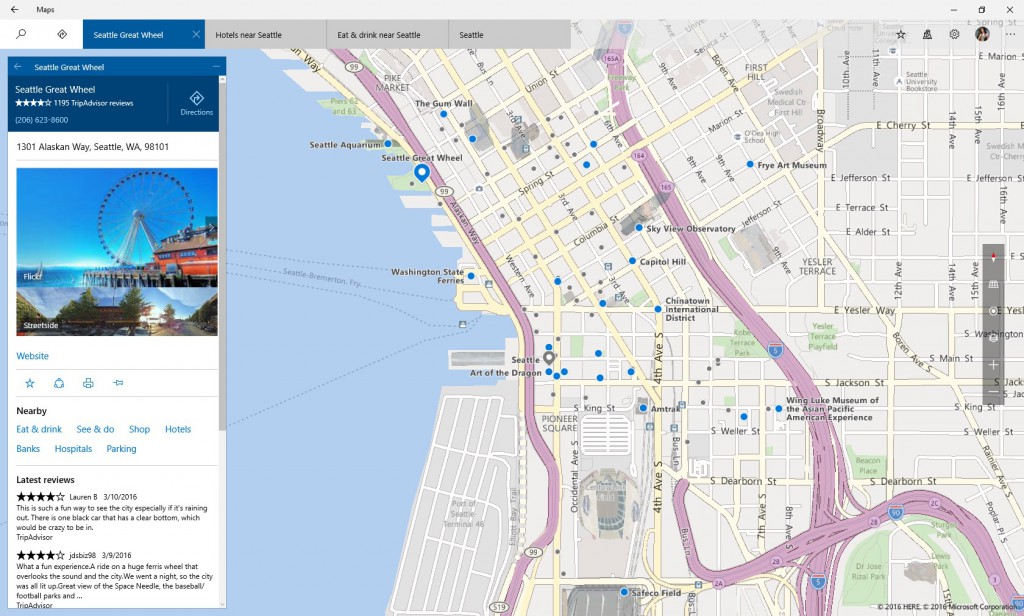
The Alarms & Clock app has been updated as well with a new inline time picker, and there are a couple of big improvements for Japanese users (one-handed kana touch keyboard and Lined-mode Text Input Canvas).
The Feedback Hub, which combines the Insider Hub and Windows Feedback apps, also makes its debut in this new build.
In addition to all those new features Build 14291 includes the following fixes:
- The issue causing the notification area ("systray") to look out of alignment when turning on the "always show all icons in the notification area" should now be fixed.
- Fixed the issue where connectivity to older Wi-Fi networks using the WEP encryption security method may be broken.
- Fixed an issue where the "X" to close the "Find of Page" toolbar in Microsoft Edge is displayed off screen on 8-inch devices when in portrait mode.
- Fixed an issue where the USB icon in the notification area was reverting to the old icon when ejecting drives.
- Fixed an issue where clicking the suggested search in Microsoft Edge resulted in a URL to the search as the search string.
With this being a Fast ring release, there are the usual list of known issues to be aware of including:
- Microsoft is continue to investigate an issue in which some Surface Pro 3, Surface Pro 4, and Surface Book devices experience a freeze or hang and all input such as keyboard/trackpad and touch do not work. The workaround is to hold down the power button to force the device to hard-reboot.
- Your PC may freeze when plugging in an Xbox One or Xbox 360 controller and other gamepads in this build.
- If you use Hyper-V and have a Virtual Switch configured for your network adapter, you may see an error indicator (red-colored "X") for your network adapter in the notification area of your taskbar. The error indicator is incorrect and your network adapter should continue to work just fine.
- We are seeing reports of some apps such as QQ crashing. We are currently investigating, and this bug may also impact older apps such as Windows Live Mail and Expression Encoder 4.
- If you have Kaspersky Anti-Virus, Internet Security, or the Kaspersky Total Security Suite installed on your PC there is a known driver bug that prevents these programs from working as expected in builds from the Development Branch. We are partnering with Kaspersky to fix this issue for a future release, but at this time there are no known workarounds. While this issue is present, we recommend using Windows Defender or another third party anti-virus product of your choice to remain protected.
Are you excited about the introduction of extensions in Edge? Will it make you use Microsoft's new browser?
Photo credit: charnsitr / Shutterstock
-

Windows 10 Insider Preview Redstone Build 14291 delivers extensions to Microsoft Edge and other new features
Publié: mars 18, 2016, 1:18am CET par Wayne Williams

Microsoft is having a very busy Thursday. As well as beginning the long-awaited rollout of Windows 10 Mobile, the software giant has also pushed the button on a new PC build for Insiders on the Fast ring.
Fast ring updates sometimes offer new features, but other times it’s just tweaks to the core and bug fixes. Windows 10 Insider Build 14291 is one the more noteworthy updates, finally delivering the long awaited extensions in Microsoft Edge, as well as pinned tabs and other Edge enhancements. There’s also an updated Maps app, and a wealth of other changes, including the introduction of a new Feedback Hub.
Extension support is of course the biggie and finally gives Microsoft Edge a chance to compete with the likes of Firefox and Chrome. To try out an extension, just click on the ellipses (…) at the top right and then click Extensions. In the Extensions pane click Get extensions.
This is obviously a new feature, so there aren’t many add-ons available at the moment, but you can try out Mouse Gestures, Microsoft Translator (automatically translates pages in over 50 different languages) and an early version of Reddit Enhancement Suite.
More extensions are on the way, including AdBlock, Adblock Plus, Amazon, LastPass, Evernote.

Although extensions currently have to be downloaded and sideloaded they will eventually be made available through the Windows Store.
Edge also now lets you pin tabs so you can have easy access to favorite and regularly used sites. This feature works exactly as you’d expect. To pin a tab, right-click on it and choose Pin tab. To unpin a tab, right-click on it and choose Unpin tab. Pinned tabs don’t show a close button, so can’t be closed accidentally.
Finally, you can now copy any link into your clipboard, and right-click on the address bar in Microsoft Edge and choose "Paste and go" from the context menu. This is a standard feature found in most other browsers, and is a welcome inclusion in Edge.
Other Changes
The updated Maps app offers a more lightweight and improved UI as well as general improvements and new features including one-tap access to search and directions from anywhere, the ability to view multiple searches and directions at the same time, and Cortana based turn-by-turn directions. You can read more about the changes to the app here.

The Alarms & Clock app has been updated as well with a new inline time picker, and there are a couple of big improvements for Japanese users (one-handed kana touch keyboard and Lined-mode Text Input Canvas).
The Feedback Hub, which combines the Insider Hub and Windows Feedback apps, also makes its debut in this new build.
In addition to all those new features Build 14291 includes the following fixes:
- The issue causing the notification area ("systray") to look out of alignment when turning on the "always show all icons in the notification area" should now be fixed.
- Fixed the issue where connectivity to older Wi-Fi networks using the WEP encryption security method may be broken.
- Fixed an issue where the "X" to close the "Find of Page" toolbar in Microsoft Edge is displayed off screen on 8-inch devices when in portrait mode.
- Fixed an issue where the USB icon in the notification area was reverting to the old icon when ejecting drives.
- Fixed an issue where clicking the suggested search in Microsoft Edge resulted in a URL to the search as the search string.
With this being a Fast ring release, there are the usual list of known issues to be aware of including:
- Microsoft is continue to investigate an issue in which some Surface Pro 3, Surface Pro 4, and Surface Book devices experience a freeze or hang and all input such as keyboard/trackpad and touch do not work. The workaround is to hold down the power button to force the device to hard-reboot.
- Your PC may freeze when plugging in an Xbox One or Xbox 360 controller and other gamepads in this build.
- If you use Hyper-V and have a Virtual Switch configured for your network adapter, you may see an error indicator (red-colored "X") for your network adapter in the notification area of your taskbar. The error indicator is incorrect and your network adapter should continue to work just fine.
- We are seeing reports of some apps such as QQ crashing. We are currently investigating, and this bug may also impact older apps such as Windows Live Mail and Expression Encoder 4.
- If you have Kaspersky Anti-Virus, Internet Security, or the Kaspersky Total Security Suite installed on your PC there is a known driver bug that prevents these programs from working as expected in builds from the Development Branch. We are partnering with Kaspersky to fix this issue for a future release, but at this time there are no known workarounds. While this issue is present, we recommend using Windows Defender or another third party anti-virus product of your choice to remain protected.
Are you excited about the introduction of extensions in Edge? Will it make you use Microsoft's new browser?
Photo credit: charnsitr / Shutterstock
-

Should you upgrade to Windows 10 Mobile from Windows Phone 8.1? This is what you'll lose if you do
Publié: mars 17, 2016, 9:08pm CET par Wayne Williams

After what seems like forever, Microsoft has finally started rolling out Windows 10 Mobile to select Windows Phone 8.1 devices. It’s been a long, long wait for Windows Phone users, and if you’re one of them you’ll understandably be keen to begin the upgrade process as soon as possible (provided your device is compatible of course).
But hold on a minute. Sure, the new mobile OS has a lot of welcome features, as well as access to Universal Windows Apps, but don't start that upgrade just yet because you might lose more than you've bargained for if you do.
To begin it's worth pointing out that while the lure of Windows 10 Mobile is undoubtedly strong, not all features offered in the new OS are available for all compatible Windows phones -- Continuum and Hello, for example, both require hardware capabilities only offered in newer devices.
More importantly, a lot of features and functionality get removed or modified as part of the upgrade process from Windows Phone 8.1 to Windows 10 Mobile. Microsoft's list of depreciated features is as follows.
- Notifications for missed calls, messages, and emails on contact tiles is not supported at the time of Windows 10 Mobile release.
- Me Tile and Me Card are no longer supported.
- Cortana can no longer search for apps, setting, email, text messaging, contacts and QR Codes on the device and can no longer open apps through voice commands.
- "Hey Cortana" is no longer available on some upgraded devices.
- Group tiles can no longer be used to receive social networking status updates.
- Indoor Maps are no longer available for some locations.
- Certain enterprise features, including Data Protection Under Lock, are not available; please contact your Microsoft Volume Licensing representative for more information.
- At time of Windows 10 Mobile release Outlook Mail app cannot open .EML attachments.
- Outlook Calendar app does not support Tasks.
- MDM capability to prevent saving and sharing Office documents not supported.
For a lot of people, the features that will be lost will be more than compensated for by the benefits that Windows 10 Mobile brings, but you should definitely make sure you're happy with the trade off. The loss of "Hey Cortana" on certain devices may be a deal breaker for some, and it's clear from the list that while Windows 10 Mobile is now out officially, it's still very much a work in progress and it may pay for you to wait a little longer before upgrading.
Photo Credit: pathdoc / Shutterstock
-

Microsoft begins rolling out Windows 10 Mobile to select Windows Phone 8.1 devices
Publié: mars 17, 2016, 5:51pm CET par Wayne Williams
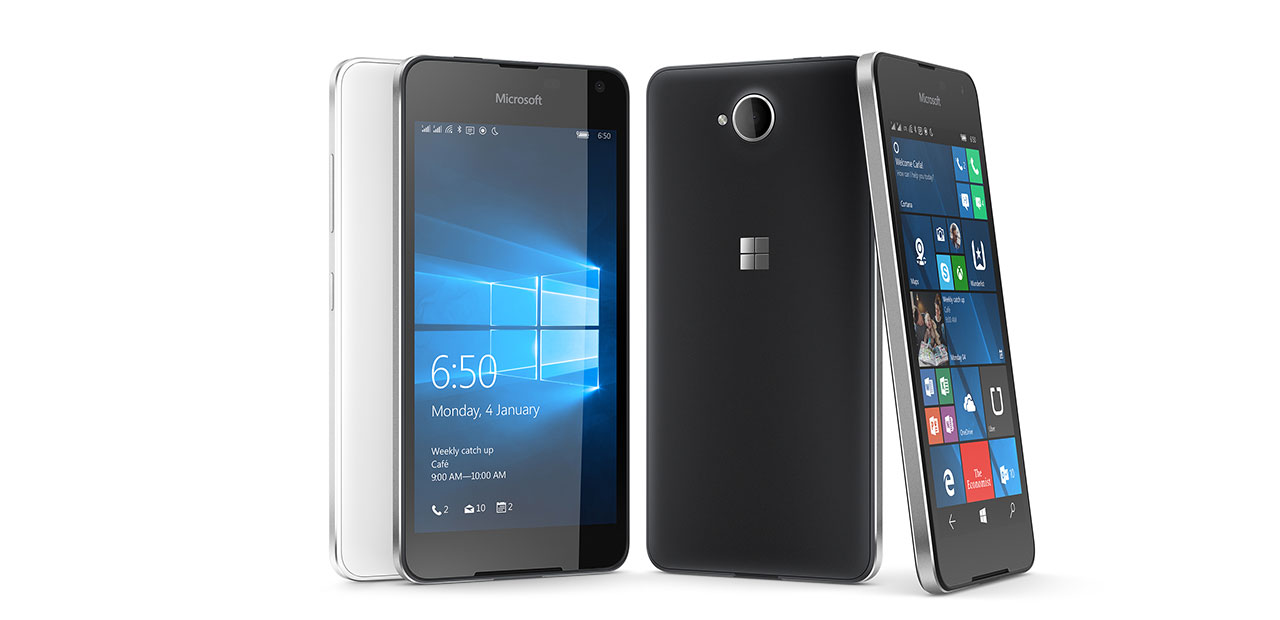
Windows 10 for PCs and tablets launched way back in July last year. The mobile version of the new OS was expected to arrive a few months after, but instead what we got were numerous delays. When Microsoft introduced the Lumia 950 and 950 XL in November, both running the new OS, it seemed as if the wait was nearly over, but that turned out not to be the case.
If you have been desperately awaiting the arrival of the mobile OS, the good news is the rumors were true, and today Microsoft officially begins the roll-out to select Windows Phone 8.1 devices.
Windows 10 Mobile offers all of the features you’ve heard about, including Continuum, Windows Hello and Cortana (your device may not support every one of them though).
If you want to upgrade an existing Windows Phone 8.1 handset you’ll need to first check if your device is compatible by installing the Upgrade Advisor app from the Windows Store. If it is compatible, select "Enable Windows 10 upgrade", and you’re all set.
According to Michael Fortin, CVP Windows and Devices Group Core Quality, at the moment the list of compatible devices only "includes a limited set of Windows Phone 8.1 devices and does not include some devices that are currently running Windows 10 Mobile in the Windows 10 Mobile Insider program".
This, he continues, is because "many older devices are not able to successfully upgrade without an impact on the customer experience. Our goal is to only offer the Windows 10 upgrade to devices that we are confident can continue to deliver a good customer experience".
You can find out more about Windows 10 Mobile rollout here.
-

Anonymous serious about stopping Donald Trump's 'Fourth Reich', shares his cellphone number and more
Publié: mars 17, 2016, 4:16pm CET par Wayne Williams

Anonymous recently declared total war on Donald Trump (again), and is encouraging people to join in the fight against the Republican front-runner it compares to Hitler.
#OpWhiteRose is a new operation named after the White Rose Society. This non-violent group was originally set up in Nazi Germany to actively oppose Adolf Hitler, but has now been resurrected to combat the "menace" of Trump and his "new era of Brownshirt terrorists".
Anonymous is advising people to "seek out a White Rose Society chapter in your city, or form one yourself" and "take action".
SEE ALSO: Anonymous hacks Donald Trump's voicemail and leaks the messages
The hacktivist collective has also shared some of Trump’s personal information via Pastebin, including his social security number, cell phone number and other details that Anonymous says might aid those opposed to Trump in independently investigating this "would-be dictator".
Anonymous stops short of suggesting ways these details might be used, claiming that it is only providing them for "informational purposes" and that "you alone are responsible for your actions, as always".
The group has certainly stepped up its activity in this past week, but it remains to be seen what, if anything, it can do to derail the seemingly unstoppable Trump campaign.
Photo credit: Joe Seer / Shutterstock
-

Some of the best adventure games ever are now playable on Raspberry Pi
Publié: mars 14, 2016, 4:40pm CET par Wayne Williams
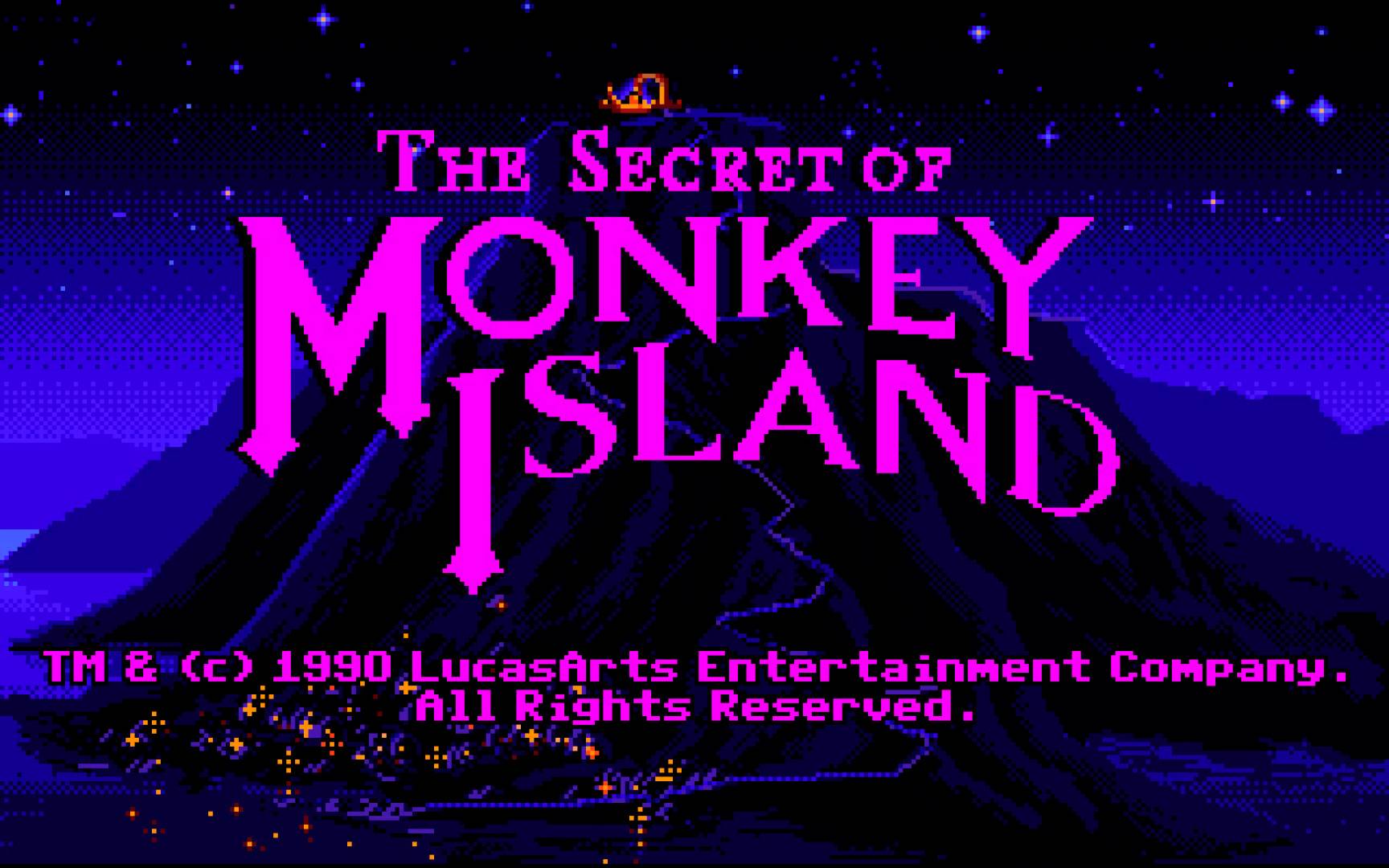
It’s Pi Day, so naturally the Raspberry Pi Foundation has a little gift for Raspberry Pi owners. No, it’s not new hardware, but rather news that you can now play some of the all-time best point and click adventure games on the diminutive board.
The popular adventure game emulator ScummVM has now been ported over to the Raspberry Pi, allowing users to enjoy some of the greatest games from the early 1990s.
SEE ALSO: Raspberry Pi 3 launches! 10x faster, 64-bit Quad-Core CPU, built in Wi-Fi and Bluetooth
Supported games you can download and play include Beneath a Steel Sky, Flight of the Amazon Queen, Lure of the Temptress, and Broken Sword (a personal favorite of mine). You can also enjoy popular LucasArts games like The Secret of Monkey Island and The Day of the Tentacle and Full Throttle.
You can download ScummVM for Raspberry Pi from the downloads page here.
What was your favorite point and click adventure game?
-

Windows 10 Insider Preview Redstone Build 14279 arrives on the Fast ring, with a few noteworthy changes
Publié: mars 4, 2016, 7:59pm CET par Wayne Williams
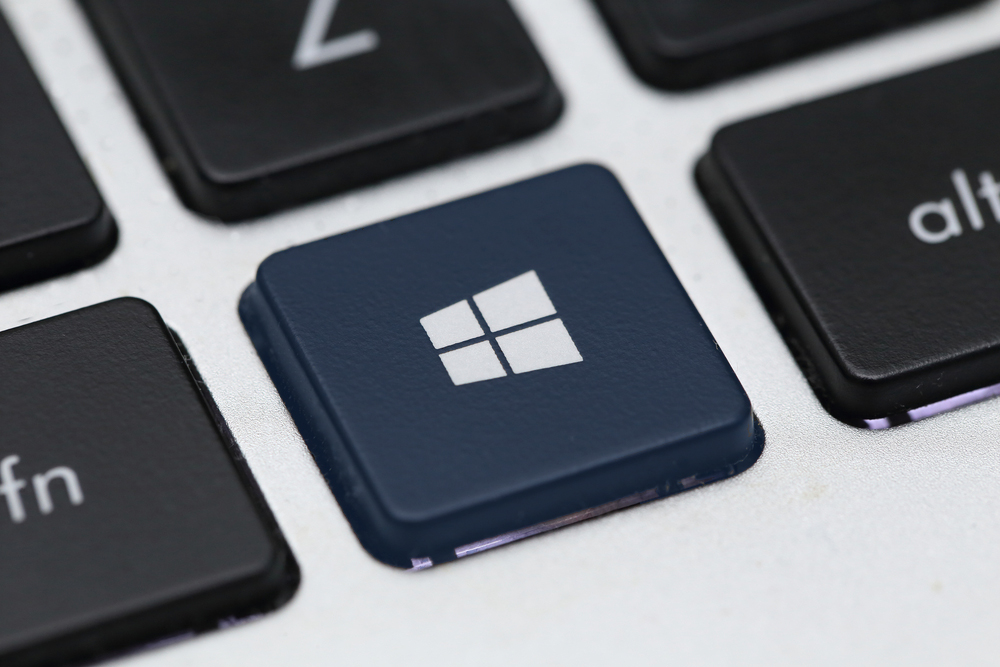
After tweeting that Microsoft tends to avoid releasing new Insider Preview builds on a Friday so the team doesn’t have to work over the weekend dealing with potential issues, Microsoft’s Gabe Aul pushed the button to release a new Windows 10 build on a Friday.
Fast ring releases sometimes have a lot of new features and changes, but can often just deliver a few internal tweaks. Insider Preview Redstone Build 14279 falls into the former camp, with improvements to Cortana, logon, and apps.
First up, Cortana. Microsoft’s personal assistant is now available in more languages, including Spanish (Mexico), Portuguese (Brazil) and French (Canada).
Interestingly, Cortana changes based on where you access her.
Aul explains "For each new market and language, the Cortana Team works to develop a custom experience that is relevant in each individual market and language. For instance, in Brazil -- Cortana is fond of pasteis which is a common food found in many regions across Brazil. And in Mexico, we added local flavor to reflect the accent and language of the country".
Cortana also now remembers things for you, like the name of a book you want to read, or a to-do task without a set due date. Aul notes in "future builds Cortana will be able to retrieve these upon request, just like a real personal assistant would".
The logon experience has been updated in this new build -- a single background image now appears on both the logon and Lock screens. Unless you're using Windows Spotlight. That will be handled in a future build.
Other changes include Sway integration with the Photos app and March updates for the Xbox app for Windows 10.
This build fixes the following issues:
- An issue where Microsoft Edge and Cortana were crashing for users with roaming profiles.
- An issue where Cortana would continue to show reminders that have been completed.
- An issue where items copied/moved to the desktop would not display until the desktop is manually refreshed by right-clicking on the desktop and choosing "Refresh" or pressing F5.
- An issue where downloading certain drivers from Windows Update was causing some PCs to bluescreen.
But, because it’s a Fast ring release, there are several known issues to be aware of.
- An issue in which some Surface Pro 3, Surface Pro 4, and Surface Book devices experience a freeze or hang and all input such as keyboard/trackpad and touch do not work. The workaround is to hold down the power button to force the device to hard-reboot.
- Some PCs will freeze or bluescreen when resuming from hibernation. Disabling hibernation is a workaround in some cases until this is fixed.
- If you have Kaspersky Anti-Virus, Internet Security, or the Kaspersky Total Security Suite installed on your PC there is a known driver bug that prevents these programs from working as expected in builds from the Development Branch. Microsoft is partnering with Kaspersky to fix this issue for a future release, but at this time there are no known workarounds. While this issue is present, Microsoft recommends using Windows Defender or another third party anti-virus product of your choice to remain protected.
- Turning on the "always show all icons in the notification area" setting disrupts the layout of the notification area ("systray"). Your notification area will look out of alignment.
- Apps such as QQ crashing due to an OS reliability issue. Microsoft is currently investigating. This bug is also impacting older apps such as Windows Live Mail and Expression Encoder 4.
Photo credit: charnsitr / Shutterstock
-

popSLATE 2 adds a smart second screen to your iPhone -- and it looks amazing
Publié: mars 4, 2016, 1:59pm CET par Wayne Williams
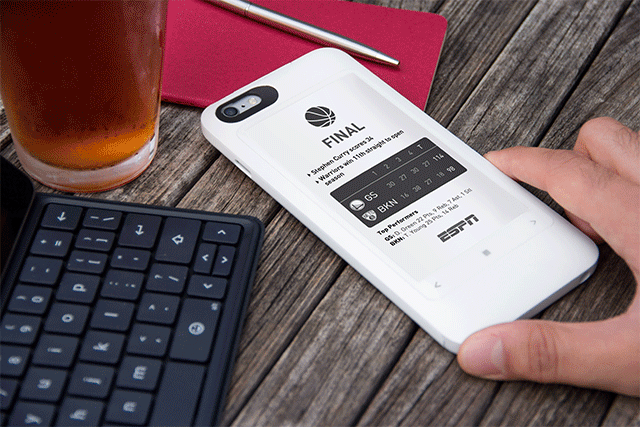
At BetaNews we get bombarded with Indiegogo and Kickstarter campaigns on a daily basis, the vast majority of which we never cover. Occasionally though, we see something that really makes us sit up and pay attention. popSLATE 2 is such a project.
popSLATE 2 puts a second shatterproof E-Ink screen on the back of your phone, so you can view the time, news headlines, sports scores, stock quotes and the like without having to unlock your phone. You can read a book on it, use the screen to display discount, loyalty and gift cards, and although it’s always-on it won’t drain your battery life because the case also doubles as a battery pack.
The creators say the case will give your phone an additional nine hours of talk time and four hours of web browsing, and customizable dashboards let you choose everything you want to display on the second screen.
It delivers real-time smart alerts, and the 200 DPI resolution and anti-glare screen mean it should be a comfortable read. You navigate around using the capacitive buttons on the bottom.
The case only adds 0.16" to the thickness of your device, and you can use your existing Lightning cable to charge your iPhone and the popSLATE 2 battery pack at the same time.
Available for iPhone 6, 6s, 6 Plus and 6s Plus, there are choice of two case styles -- black text on a white background, or white text on a black background.
As for costs, pledging $69 will get you one popSLATE 2 ($80 off the MSRP), with free US shipping. Backers in Canada will have to add $10 for delivery, and if you’re anywhere else in the world, you’ll need to add $20.
Although I rarely back Indiegogo or Kickstarter campaigns, I’ve backed this and can’t wait for July to roll around as that’s when it’s estimated shipping will start.
Check out the campaign here.
-

How to fix Windows 10's most annoying problems
Publié: mars 3, 2016, 6:00pm CET par Wayne Williams

Windows 10 has been out for seven months now, and while it’s still not the perfect, most polished operating system there is, Microsoft has at least fixed a lot of the problems users originally encountered with it.
However, our original two guides to fixing Windows 10’s worst problems remain hugely popular, suggesting that users are still having issues and looking for workarounds to try. For that reason, we’ve decide to revisit the topic, with some new problems and solutions.
SEE ALSO: Transform Windows 10 into the operating system it should be
Restore A Missing 'Open With' Option
Some users have found that the 'Open with' option usually found in the right-click context menu has vanished from Windows 10. That’s an annoying problem, especially as Windows 10 occasionally screws up the default applications you use to open common files.
There is a simple fix for the problem however, and it’s one we’ve covered here.
Restore Your Default Apps
As mentioned above, Windows 10 does occasionally reset the default apps to its own choices -- replacing Chrome with Edge, for example. It’s easy enough to change them back, however.
Open the Start menu, type default app settings and hit enter. You can also change the default programs via the Control Panel. Open the Start menu, type default programs, hit enter and click Set your default programs in the window that opens.

Sound Problems
Seven months after Windows 10 first became available, and users are still complaining about problems with sound. If you are having audio problems, try the suggestions here.
Prevent Bad Updates From Installing
Microsoft made Windows 10 updates mandatory to prevent the problem with unpatched PCs falling foul of malware and hackers. While that’s a smart idea, the software giant has issued several dodgy updates that have caused users all sorts of problems. If you’d like to have complete control over what updates to install, follow our guide here.
Can’t Open Microsoft Websites
If you’ve taken steps to block or disable Microsoft’s telemetry and data collection (aka spying) you might discover this results in you not being able to open certain Microsoft websites, including Outlook.com and Bing.
To fix this, reset the Hosts file to the default. You’ll find the file in C:\Windows\System32\drivers\etc\. You can follow the reset instructions here. There’s also an official Fixit tool you can download from Microsoft here.
If that doesn’t solve the problem, click start and type Firewall. Open the Firewall settings, and click on Restore defaults. Next click Advanced settings. In the Windows Firewall with Advanced Security window click on Restore Default Policy.
Buggy Software
When Windows 10 first came out there were quite a few programs that weren’t fully compatible with it. Many developers have since addressed this problem, but not all. If a program isn’t running correctly in Windows 10, you can try opening it in Compatibility Mode. Right-click on the application’s executable, select Properties and open the Compatibility tab. Choose the version of Windows the software last ran on properly (Windows 7 is always a good bet).
The Application Was Unable To Start Correctly (0xc0000018)
Encountered this problem with one or more installed applications? If the obvious solutions don’t work (uninstalling/reinstalling the application, updating to the latest version), you should try rebooting your PC repeatedly, to see if that fixes the problem. I know, it sounds ridiculous, but it may just work.
If you still get no joy, try launching regedit and navigating to HKEY_LOCAL_MACHINE\SOFTWARE\Wow6432Node\Microsoft\WindowsNT\CurrentVersion\Windows. Find APPINIT_DLLS and delete everything in it, or failing that the entire key. If it’s already empty, go back to the rebooting continually option, or look here for more advice.
Fix the Windows Store Connection Error
Occasionally you may encounter a ‘Check your connection. All fixed?’ error when opening the Windows Store or downloading or updating an app from there. This comes with error code 0x80072EFD.
You’re advised to ‘Refresh the page’ which may work if the problem is a temporary one with the Windows Store itself.
You can also try checking for updates, and temporarily disable any security software to see if that fixes things. If you’re using a proxy, disable or reset it.
Failing that, open the registry editor as an administrator and navigate to:
HKEY_LOCAL_MACHINE\SOFTWARE\Microsoft\WindowsNT\C urrentVersion\NetworkList\Profiles
Right-click on Profiles and go to Permissions and click Advanced.
Check Replace all child object permission entries with inheritable permission entries from this object and click Apply. Reboot.
If that still doesn’t sort the issue, try resetting the Windows Store cache. Go to Start and type wsreset.exe, right-click the entry and run it as an administrator.
Stop Windows 10 Messing Up Your Drivers
As well as automatically updating the operating system, Windows 10 also automatically updates drivers, but that can prove problematic for some users. If you’d rather choose for yourself which drivers are updated, and therefore prevent driver-based problems, follow the instructions here.
Don’t Lose Files
File History backs up copies of your personal files onto an external hard disk or networked drive. It isn’t enabled by default in Windows 10, but you can easily turn it on.
Click Start and open Settings. Click Update and security entry and click Backup on the left. You’ll see the File History entry there. Click the Add a drive button. Windows will scan your computer for local and network drives you can use to store your backups in. Select one from the list. File History will now be shown as On and you’ll have access to all of the backed up files.
You Don’t Have Permission To Save In This Location
A frustrating problem encountered by lots of Windows 10 users, this tends to crop up when trying to save Office documents. The first (and obvious) thing to do is check the permissions of the folder you’re trying, and failing, to save to.
Right-click the folder in question and select Properties. Switch to the Security tab and click Advanced. Check Replace all child object permission entries with inheritable permission entries from this object at bottom. Click Apply followed by OK.
If that doesn’t work, you can try setting yourself as an Administrator, if you aren’t already. Open the Run box and type netplwiz. Hit enter, and select your user account. Click on Properties. Open the Group Membership tab and make the user an Administrator. Reboot and see if this fixes the issue.
Kernel Security Check Failure
Blue screen Stop errors are never fun, and this one sounds particularly nasty. The first thing to do is check for malware, and make sure you have all the latest Windows 10 updates installed. It’s also worth running the System File Checker. Click Start and type CMD. Right-click the entry and run it as an administrator. In the Command Prompt window type sfc /scannow and hit enter.
Some people have found the problem is caused by NVIDIA GeForce drivers, so trying updating those.
If that doesn’t work, boot into Safe Mode and see if the problem goes away.

If you've encountered other problems, or have found solutions that readers might find useful, please share them in the comments below.
Image Credit: alphaspirit / Shutterstock
-

Windows 10 deleting some user apps without permission isn't news
Publié: mars 2, 2016, 4:02pm CET par Wayne Williams

I’ve seen a news story doing the rounds today, about Windows 10 removing some third-party user apps following a big update. It’s understandable that people this has happened to are upset, and obviously it's not something that you want your operating system to be doing.
But it’s also not a new phenomenon -- far from it.
The problem actually cropped up back in November, when the first major update for the new operating system was rolled out. The November Update reset privacy settings and default apps for some users, and was found to be also uninstalling some third party desktop programs without asking.
A thread on Reddit mentioned System information tool Speccy, CPU-Z, SmartFTP, and AMD Catalyst Control Center among the programs that Windows 10 automatically removed.
Microsoft pulled the November update, and then reissued a version which didn’t reset user settings. Updates to Speccy and the like fixed the problem of the apps being removed for most people.
The story has been given a new lease of life after the usually excellent How-To Geek covered it again, but there’s nothing really new to report on the situation. If you find Windows 10 has removed programs following a big update, then just reinstall them and that will fix the problem.
The chances are if you encountered this issue after installing the November Update, you won’t have encountered it since.
Photo Credit: Ryan Jorgensen // Jorgo/Shutterstock
-

Windows 10 overtakes Windows 8.x, but its growth is slow despite Microsoft forcing it on users
Publié: mars 1, 2016, 7:25pm CET par Wayne Williams

In January, according to figures from NetMarketShare, Windows 10 managed to best Windows 8.1 in terms of usage share. In February, it overtook both flavors of the tiled OS -- Windows 8 and 8.1 combined.
That’s hardly surprising, as Windows 8.x is losing share at almost the same rate that Windows 10 is gaining it. In a month when Windows 10 became a recommended update, meaning on some machines the installation of the OS could start automatically, you might expect growth to be strong, but you’d be wrong.
In February, Windows 10 went from 11.85 percent to 12.82 percent, a gain of 0.97 percentage points. That’s about half as much as it grew the previous month, and its second slowest month yet (in December it grew by just 0.96 percentage points). Sure, February is a shorter month, but only by a day or two.
That suggests a majority of Windows 7 and 8.x users are currently choosing not to go ahead with the upgrade when presented with it. Interesting. I wonder what the share growth would have been like if Microsoft hadn’t made Windows 10 a recommended update?
Elsewhere, Windows 8.1 went from 10.40 percent share in January to 9.83 percent in February, a drop of 0.57 percentage points. Windows 8, fell from 2.68 percent to 2.43 percent, a drop of 0.25 percentage points. In total Windows 8.x lost 0.82 percent share.
Windows 7 is mostly unaffected by Windows 10. Going from 52.47 percent in January to 52.34 percent in February. A drop of 0.13 percentage points.
Finally, XP continues to hold on, with 11.24 percent share, a decline of just 0.18 percentage points.
Will Microsoft’s aggressive tactics and forced upgrading finally pay dividends for the company in March? We’ll find out in a month’s time.
Image Credit: Richard M Lee / Shutterstock
-

Transform Windows 10 into the operating system it should be
Publié: mars 1, 2016, 4:20pm CET par Wayne Williams

Windows 10 is a decent operating system, but there are a lot of niggles with it that I find frustrating, and I know I’m not alone in this. I’m not too worried about the new operating system "spying" on me, but there are plenty of other areas where, frankly, Microsoft could -- and should -- be doing better.
In the main, I find Windows 10 to still be rather half-baked. It’s very much a work in progress rather than a finished, and polished operating system. Fortunately if you take matters into your own hands, you can improve the OS in myriad ways and fix all of the issues that Microsoft can't, or won't.
Stop the Spying
Microsoft likes to know how you use Windows 10, and the operating system "gets to know you" in various ways in order to provide a "more personal computing experience". If you don’t want a more personal computing experience, and you don’t use Cortana, then you might want to reduce the amount of snooping.
For this, the best option is to use W10Privacy. The program offers a comprehensive collection of privacy-based settings you can block or change. The options are sorted into categories and color-coded so you can see whether a change is recommended or not.
Control Updates
Updates in Windows 10 are mandatory. If you’re running the Pro, Enterprise or Education editions you can defer updates, but not reject them outright. The latest version of W10Privacy does, however, give you complete control over updates. Setting it up takes a little work, but just follow this guide.
Get a Better Start Menu
The Windows 10 Start menu isn’t horrendous, but the tiled approach isn’t to everyone’s liking. Live tiles seem a bit of an odd addition too. You have to click on the Start button and wait for them to appear and update. I personally hardly ever pay any attention to the Start menu now, preferring to search for the programs and apps I want to run, or using desktop or Taskbar shortcuts.
If you’re not a fan of the Windows 10 Start menu, you can replace it with one of several free alternatives. Classic Shell is our personal favorite, but there are others to choose from.
Banish Edge
Microsoft Edge, like Windows 10 itself, will be pretty good... when it’s finished. At the moment, the new browser doesn’t really compete with the likes of Firefox or Chrome. Annoyingly it sets (and occasionally resets) itself to not only be the default browser, but the default PDF reader too.
If you definitely don’t want Edge, block it using Edge Blocker. You’ll find the instructions for doing so here.
Get Rid of Bing
Microsoft’s search engine is baked into Windows 10, not just in Microsoft Edge, but Cortana as well.
If you don’t want this to be the case, you can change the default engine to Google, or any other search site for that matter.
The process for changing the default search engine in Edge isn’t obvious. What you need to do is go to the search site you want to set as the new default, like www.google.com, and click or tap the ellipses in the top right corner of the browser and select Settings.
Scroll down and select View advanced settings.
Scroll down to Search in the address bar with, select Bing (www.bing.com) and select Add new.
Google should appear in the list of search engines. Select it and click/tap Add as default.
To remove Bing from Cortana, you’ll need to make use of the Chrometana add-on. Follow the instructions here.
Remove Ads and Unwanted Apps
Microsoft doesn’t advertise apps as such, but it does make app suggestions. If you don’t want these, you can toggle the options off. To remove the suggestions from the Start menu, go to Settings > Personalization > Start and toggle off Occasionally show suggestions in Start.
The software giant recently pushed the Rise of the Tomb Raider game on Windows 10 Lock Screens. To prevent this happening again, follow the instructions here.
Windows 10 comes with a lot of apps, some are useful, but plenty of which you’ll never even open. To get rid of these, use a program like IObit Uninstaller. Click on the Win Manager setting in the program and select the apps to remove.
Restore Features Microsoft Removed
Microsoft stripped out some functionality and tools found in previous versions of its operating system. Missing features include the Windows Experience Index tool and Windows Media Center.
You can get some of these elements back using the Missed Features Installer (MFI) for Windows 10. Follow the guide here.
Miscellaneous Tweaks
You can disable Windows 10's Action Center by following this advice, completely remove OneDrive from your system, and -- if you haven’t blocked Edge -- make Firefox or Chrome the default browser in Windows 10.
That should fix the majority of the annoyances found in Windows 10, but if you know of any other tricks, tweaks and suggestions please share them in the comments below.
Photo Credit: cherezoff/Shutterstock
-

Apple takes its FBI fight to Congress -- read the company's powerful opening statement
Publié: février 29, 2016, 8:52pm CET par Wayne Williams
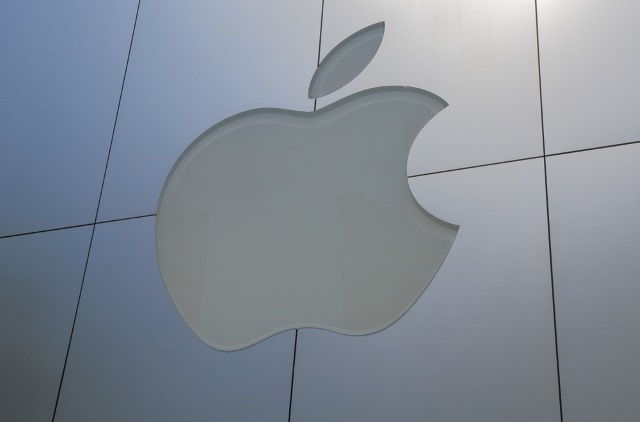
As you know, the FBI wants Apple to help unlock an iPhone linked to one of the San Bernardino shooters. Apple is resisting the request, and tomorrow will testify at a Congressional encryption hearing.
Apple’s General Counsel, Bruce Sewell, will make the company’s case before the house Judiciary Committee and his opening statement was sent to Apple employees earlier today. It’s an interesting read:
Thank you, Mr. Chairman. It's my pleasure to appear before you and the Committee today on behalf of Apple. We appreciate your invitation and the opportunity to be part of the discussion on this important issue which centers on the civil liberties at the foundation of our country.
I want to repeat something we have said since the beginning -- that the victims and families of the San Bernardino attacks have our deepest sympathies and we strongly agree that justice should be served. Apple has no sympathy for terrorists.
We have the utmost respect for law enforcement and share their goal of creating a safer world. We have a team of dedicated professionals that are on call 24 hours a day, seven days a week, 365 days a year to assist law enforcement. When the FBI came to us in the immediate aftermath of the San Bernardino attacks, we gave all the information we had related to their investigation. And we went beyond that by making Apple engineers available to advise them on a number of additional investigative options.
But we now find ourselves at the center of an extraordinary circumstance. The FBI has asked a Court to order us to give them something we don't have. To create an operating system that does not exist -- because it would be too dangerous. They are asking for a backdoor into the iPhone -- specifically to build a software tool that can break the encryption system which protects personal information on every iPhone.
As we have told them -- and as we have told the American public -- building that software tool would not affect just one iPhone. It would weaken the security for all of them. In fact, just last week Director Comey agreed that the FBI would likely use this precedent in other cases involving other phones. District Attorney Vance has also said he would absolutely plan to use this on over 175 phones. We can all agree this is not about access to just one iPhone.
The FBI is asking Apple to weaken the security of our products. Hackers and cyber criminals could use this to wreak havoc on our privacy and personal safety. It would set a dangerous precedent for government intrusion on the privacy and safety of its citizens.
Hundreds of millions of law-abiding people trust Apple's products with the most intimate details of their daily lives – photos, private conversations, health data, financial accounts, and information about the user's location as well as the location of their friends and families. Some of you might have an iPhone in your pocket right now, and if you think about it, there's probably more information stored on that iPhone than a thief could steal by breaking into your house. The only way we know to protect that data is through strong encryption.
Every day, over a trillion transactions occur safely over the Internet as a result of encrypted communications. These range from online banking and credit card transactions to the exchange of healthcare records, ideas that will change the world for the better, and communications between loved ones. The US government has spent tens of millions of dollars through the Open Technology Fund and other US government programs to fund strong encryption. The Review Group on Intelligence and Communications Technology, convened by President Obama, urged the US government to fully support and not in any way subvert, undermine, weaken, or make vulnerable generally available commercial software.
Encryption is a good thing, a necessary thing. We have been using it in our products for over a decade. As attacks on our customers' data become increasingly sophisticated, the tools we use to defend against them must get stronger too. Weakening encryption will only hurt consumers and other well-meaning users who rely on companies like Apple to protect their personal information.
Today's hearing is titled Balancing Americans' Security and Privacy. We believe we can, and we must, have both. Protecting our data with encryption and other methods preserves our privacy and it keeps people safe.
The American people deserve an honest conversation around the important questions stemming from the FBI's current demand:
Do we want to put a limit on the technology that protects our data, and therefore our privacy and our safety, in the face of increasingly sophisticated cyber attacks? Should the FBI be allowed to stop Apple, or any company, from offering the American people the safest and most secure product it can make?
Should the FBI have the right to compel a company to produce a product it doesn't already make, to the FBI's exact specifications and for the FBI's use?
We believe that each of these questions deserves a healthy discussion, and any decision should be made after a thoughtful and honest consideration of the facts.
Most importantly, the decisions should be made by you and your colleagues as representatives of the people, rather than through a warrant request based on a 220 year- old-statute.
At Apple, we are ready to have this conversation. The feedback and support we're hearing indicate to us that the American people are ready, too.
We feel strongly that our customers, their families, their friends and their neighbors will be better protected from thieves and terrorists if we can offer the very best protections for their data. And at the same time, the freedoms and liberties we all cherish will be more secure.
Thank you for your time. I look forward to answering your questions.
The tl;dr version: encryption is a necessary thing, the FBI is asking Apple to weaken the security of its products and that will set a dangerous precedent for government intrusion on the privacy and safety of its citizens.
Photo credit: TK Kurikawa / Shutterstock
-

Microsoft announces HoloLens Development Edition, available for pre-order now
Publié: février 29, 2016, 4:05pm CET par Wayne Williams
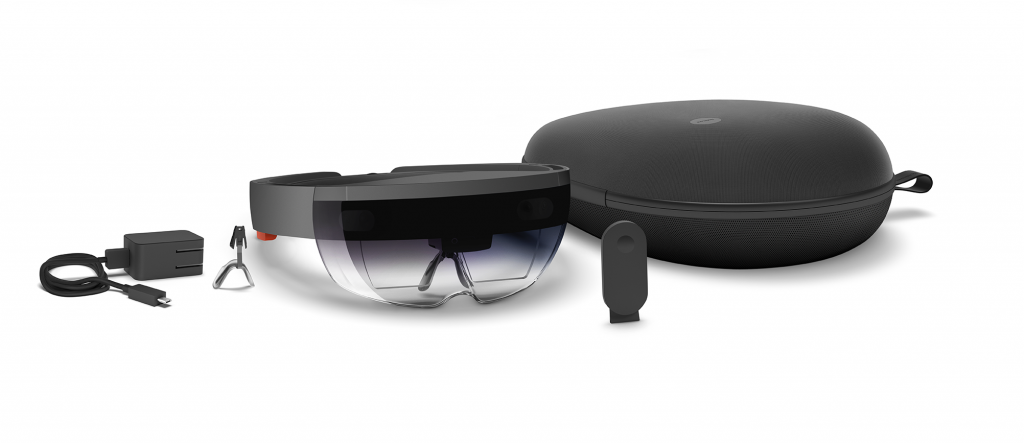
HoloLens is unquestionably one of the most exciting pieces of hardware being developed by Microsoft at the moment. The augmented reality system, or "untethered holographic computer" as the software giant refers to it, was first announced a year ago, but since then there’s been no word on when we can actually expect to see it.
Today, however, Microsoft announces a Development Edition which is now open for pre-orders, with shipping starting on March 30. This is the first step towards a consumer version.
The Windows 10 powered device is fully self-contained, and, Microsoft says, is "the only device that enables holographic computing natively with no markers, no external cameras, no wires, no phone required, and no connection to a PC needed".
Developers who purchase HoloLens will have access to hundreds of UWP apps through the Windows Store and also to a showcase of holographic app experiences designed to demonstrate what the device can do.
Alex Kipman, Technical Fellow -- Operating System Group at Microsoft, says
HoloLens is an amazing Windows 10 device, and the APIs responsible for holographic computing are already available in Windows 10. Starting today, developers will have access to documentation, and to the developer community, that will help them create amazing experiences. Developers should go to dev.windows.com/holographic for guides and detailed tutorials. Additional development tools that include Visual Studio projects and a HoloLens emulator will be released when HoloLens devices start shipping to customers on March 30. The emulator will allow developers to test holographic apps on their PC without a physical HoloLens and comes with a HoloLens development toolset -- to help developers who haven’t yet received their devices get started right away.
For now the HoloLens Development Edition will only be available to developers in the US and Canada. If you're interested in pre-ordering one, it will set you back $3000.
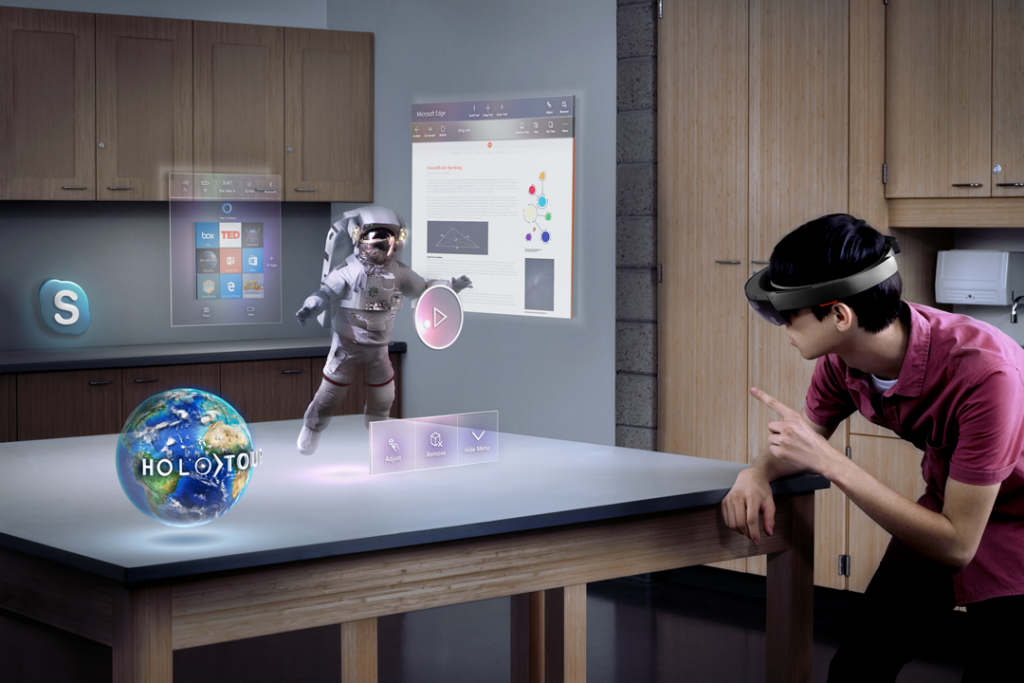
-

How to activate Windows Defender Offline in Windows 10
Publié: février 29, 2016, 3:20pm CET par Wayne Williams

Windows Defender, Windows 10’s built in antivirus tool, will keep your PC safe from numerous threats, but it’s not on a par with dedicated third-party anti-malware solutions.
Microsoft is working to make it more useful however, including adding offline capabilities that will allow you to run a system scan at bootup, and without an internet connection. That will make the tool much better at detecting and removing malicious software. Windows Defender Offline is not available to all at the moment, but you can still try it out.
Windows Defender Offline was originally introduced in 2011, and last updated in 2012, but Microsoft has added it to Windows 10 Insider Preview Build 14271 for Fast ring insiders.
If you’re running the latest build you can activate Windows Defender Offline by following these steps:
- Save your work and close any open applications.
- Click Start and launch Settings.
- Go to Update and security and click Windows Defender.
- Scroll down until you see Windows Defender Offline.
- Click the Scan Offline button.
After a countdown (which you can’t stop), your system will restart and Windows Defender will run a scan upon reboot. Microsoft says the process will take around 15 minutes to complete.
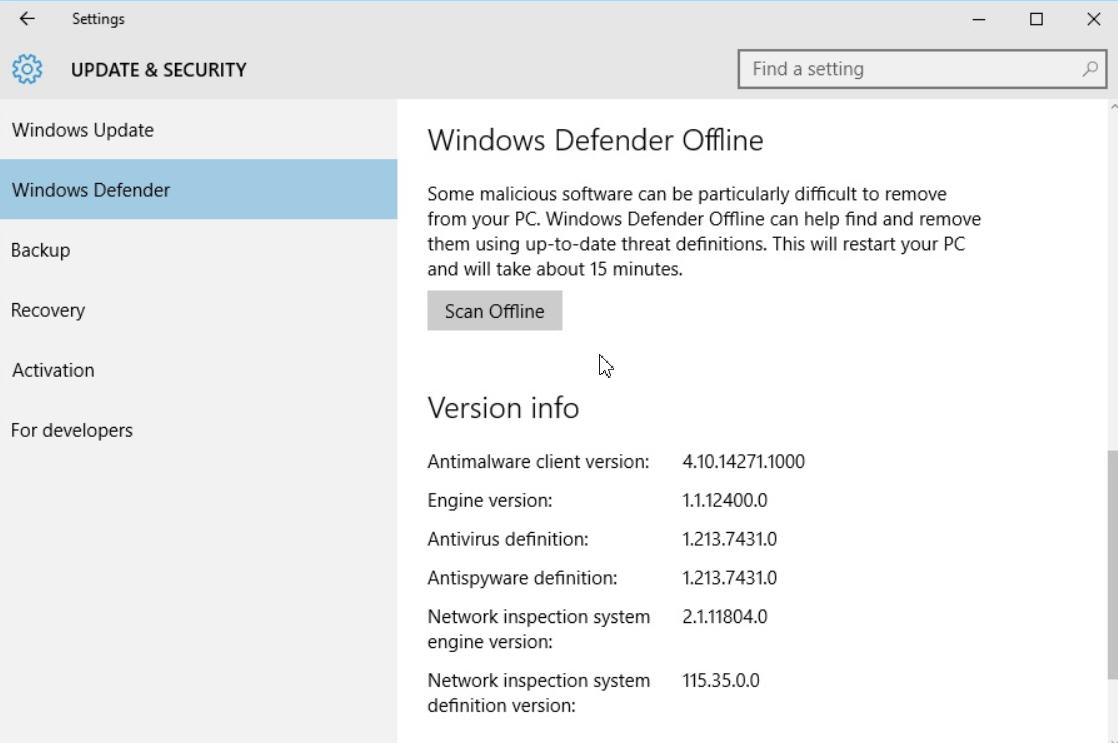
While I still wouldn't entirely trust my PC security to Windows Defender, an offline scanning mode is definitely a very welcome addition.
You can also download a version of Windows Defender Offline from here.
Photo Credit: Vladru/Shutterstock
-

From battling Scientology to taking down Islamic State, hacker group Anonymous celebrates its top ten accomplishments
Publié: février 29, 2016, 12:46pm CET par Wayne Williams

Recently Anonymous has mostly been in the news for targeting Islamic State on the web, playing its part in helping to shut down thousands of ISIS-supporting accounts on Facebook and Twitter.
But the hacktivist collective, which has been active since 2003, has initiated a lot of campaigns over the years, targeting a variety of people and organizations, some more successfully than others. The group’s list of achievements is quite impressive -- ranging from getting an internet predator arrested, to taking on the Church of Scientology.
As part of a new weekly top ten series, Anonymous has released a video celebrating some of its many accomplishments, and it’s definitely worth a watch.
SEE ALSO: Anonymous aims to delete the Islamic State 'virus' from the web, and wants your help
Other targets to feel Anonymous’ wrath have included "American white nationalist and holocaust rejector" Hal Turner, the Iranian and Russian governments, and hidden child pornography website Lolita City.
Whatever your views on Anonymous, the collective does do some good work and will no doubt do plenty more in the future.
-

Raspberry Pi 3 launches! 10x faster, 64-bit Quad-Core CPU, built in Wi-Fi and Bluetooth
Publié: février 29, 2016, 8:59am CET par Wayne Williams

Four years ago today, on 29 February 2012, the Raspberry Pi Foundation launched the original Raspberry Pi. Conceived as an ultra-cheap way to encourage kids to code as they had back in the 1980s and 90s, the uncased credit card sized computer quickly found an appreciative audience outside of the education system, with over a million Pis sold in the first year alone. Since then the firm has released several new versions, including the Raspberry Pi 2 (launched a year ago), and most recently the ultra-elusive $5 Raspberry Pi Zero.
Today, to celebrate the Pi’s 4th birthday, a new member joins the family. The Raspberry Pi 3 Model B is significantly more powerful than its predecessors and yet is priced at just $35, the same price as the Raspberry Pi 2.
The new board is powered by a 1.2GHz 64-bit Quad-Core ARM Cortex-A53 processor, which makes it 10x faster than the first generation Raspberry Pi. It includes wireless LAN & Bluetooth connectivity too, making it perfect for powerful connected projects.
The full list of specs is as follows:
- Broadcom BCM2387 chipset
- 1.2GHz 64-bit Quad-Core ARM Cortex-A53
- 802.11 bgn Wireless LAN and Bluetooth 4.1 (Bluetooth Classic and LE)
- 1GB RAM
- 64 Bit CPU
- 4 x USB ports
- 4 pole Stereo output and Composite video port
- Full size HDMI
- 10/100 BaseT Ethernet socketbr
- CSI camera port for connecting the Raspberry Pi camera
- DSI display port for connecting the Raspberry Pi touch screen display
- Micro SD port for loading your operating system and storing data
- Micro USB power source
The Raspberry Pi Foundation recommends using a 2.5A adapter if you want to connect power-hungry USB devices to the new Pi, although the board can still be run from a 5V micro-USB power adapter.
SEE ALSO: How to find and buy the ever-elusive $5 Raspberry Pi Zero
The new board is available to buy from today from all of the usual Pi suppliers including element14 and RS Components. Hopefully, with its more expensive price tag (if you can call $35 expensive), the Raspberry Pi 3 will be easier to buy than the Pi Zero.
The Raspberry Pi Foundation will continue to make and sell the Raspberry Pi 1 Model B+ ($25) and Raspberry Pi 2 Model B ($35) alongside the new board, as well as the Model A+ ($20).
A Raspberry Pi 3 Model A will be launched later in the year.
-

Apple dicks about with its site code to avoid a kerning cock up
Publié: février 26, 2016, 10:20am CET par Wayne Williams

As pointed out on Twitter, and reported by TechCrunch, Apple made a little tweak to its website’s CSS code to prevent people misreading the tagline for its latest operating system, OS X El Capitan.
The line should say, "There’s more to love with every click", but the word "click" looked a lot like an entirely different, and ruder word.
As you can see from the before and after GIF created by Ryan Ackermann, Apple has changed the letter spacing, so there’s no chance of accidentally seeing the word "dick" when glancing at the slogan.
It's this kind of attention to detail that's help make Apple the company it is today.
@bathtype before & after pic.twitter.com/mcfUW3JGua
— Ryan Ackermann (@naturaln0va) February 25, 2016
Photo Credit: iatlo/Shutterstock
-

Google Chromecast could come built into future TVs
Publié: février 25, 2016, 12:19pm CET par Wayne Williams
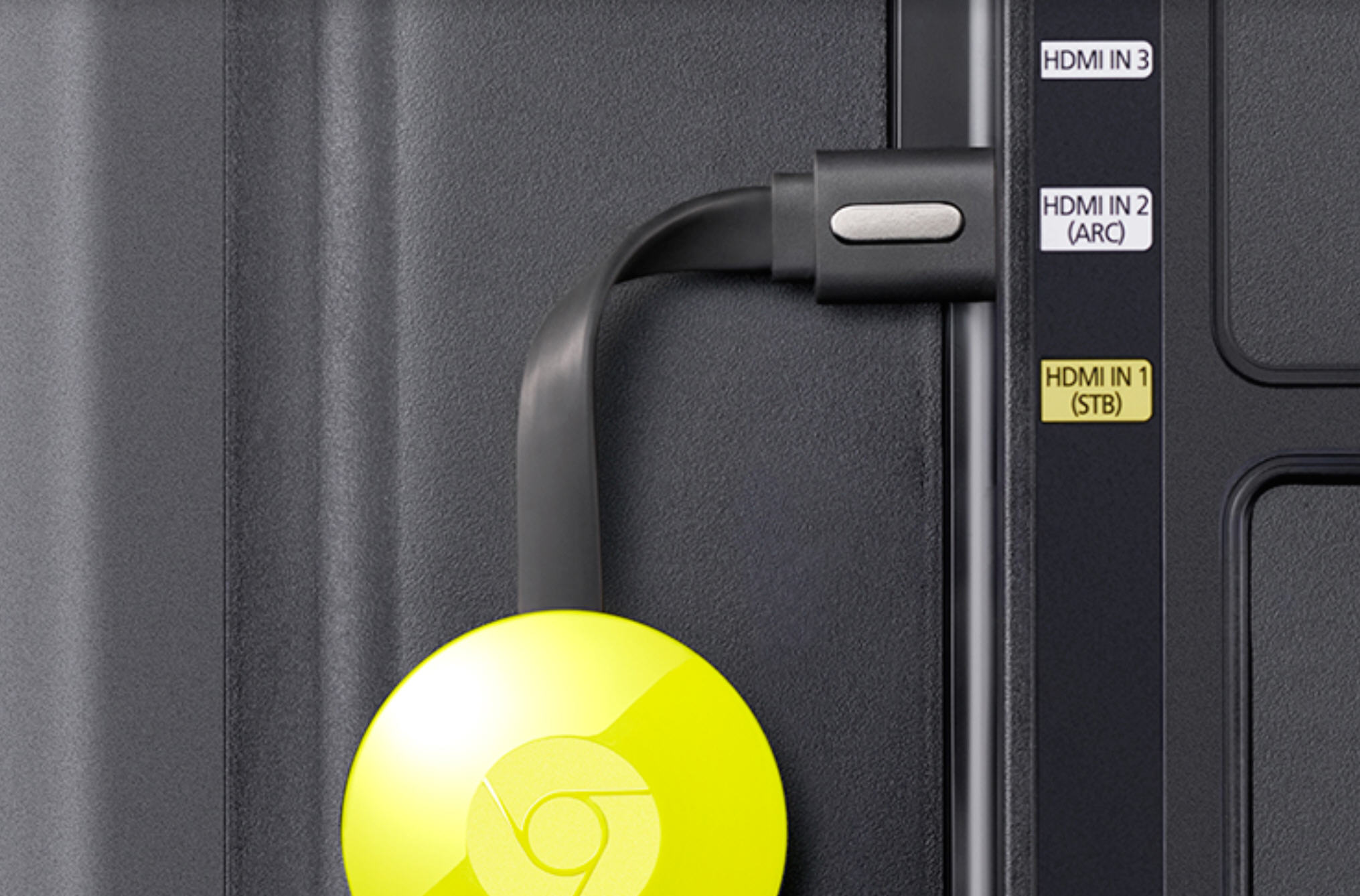
Google’s Chromecast is a nifty piece of kit. The $35 dongle lets you stream content from your smartphone or tablet to the big screen. It’s great for casting TV shows, movies, music, sports, games and more.
At the moment you need to purchase a dongle and attach it to your set via HDMI to use this functionality, but in the future that step might not be required as Google is reportedly looking to partner with TV manufacturers to offer Chromecast-like functionality natively.
According to Variety, Vizio will be Google’s first partner in this venture, and it will produce smart TVs that won’t come with any apps but rather will rely on external Android devices to connect to the TV and beam streaming content from the likes of Netflix and Hulu onto the big screen.
Variety, which claims to have heard about the plans from "multiple sources familiar with the collaboration" says that the TVs may not come with a traditional remote, but rather a dedicated Android tablet that will be bundled with media apps and a programming guide that will provide content recommendations.
The first sets are expected to arrive as early as this Spring.
This kind of approach actually makes a lot of sense, and could be a smart way for Google to make serious inroads into the living room.
-

Windows 10 Insider Preview Redstone Build 14271 arrives on the Fast ring, and there's an update for Mobile too
Publié: février 24, 2016, 7:22pm CET par Wayne Williams

Windows 10 Insider Preview Build 14267 arrived on the Fast ring 6 days ago and brought some very welcome improvements with it, including three additions to Microsoft Edge, although sadly still no support for extensions.
Today Microsoft rolls out another Fast ring update, Build 14271, and also an update for Mobile, Build 14267.1004. This is the first time the software giant has released new builds for PC and mobile on the same day.
Starting with the PC build, there’s not a lot of new content to report but the frequency with which Windows asks for feedback is now locked to "Automatically (Recommended)" in the Settings app and managed by the Insider Program.
Aside from that, the new build fixes a raft of issues:
- Fixed an issue where the window borders on apps would change from accent color to black after every upgrade to a new build.
- Updated the music control icons that are shown in taskbar previews in music apps like Groove to look more crisp and clean at higher resolutions.
- Fixed an issue where the taskbar would sometimes not auto-hide and show unexpectedly on top of full screen windows such as showing above a PowerPoint presentation when in slideshow mode.
- Fixed an issue where the "Hide notifications while presenting" setting preference is lost after upgrading to a new build.
- The entire app header in Action Center is now right-clickable instead of just the app name or "x".
- Now easier to dismiss all notifications from a specific app in Action Center by increasing the target area to encompass the entire app header.
- Fixed an issue where interaction notifications would not show a button to input text in some cases.
- Fast user switching should work now with Picture Password.
- Fixed an issue where some desktop (Win32) apps look missing from Start.
- Fixed an issue where the accent color does not automatically change when the slideshow option is chosen for your desktop background.
But of course this is a Fast ring release, so there are some known problems to contend with too.
- Microsoft is tracking an issue reported by Insiders where some PCs will freeze or bluescreen when resuming from hibernation. Disabling hibernation is a workaround in some cases until this is fixed.
- If you have Kaspersky Anti-Virus, Internet Security, or the Kaspersky Total Security Suite installed on your PC there is a known driver bug that prevents these programs from working as expected in builds from the Development Branch. Microsoft is partnering with Kaspersky to fix this issue for a future release, but at this time there are no known workarounds. While this issue is present, we recommend using Windows Defender or another third party anti-virus product of your choice to remain protected.
- Turning on the "always show all icons in the notification area" setting disrupts the layout of the notification area ("systray").
- When browsing in Microsoft Edge, charts displayed using D3.js library will not display correctly -- e.g. render as black, positioned incorrectly. Known affected sites are Cortana, Bing.com, and PowerBI.com.
As for the new Mobile build, this is essentially the same as the one Microsoft released last Friday, but fixes the problem of the Lumia 550 not charging or connecting via USB, and overcomes the issue of Visual Voicemail notifications failing to happen.
The new build also contains one new feature -- the addition of Visual Voicemail for dual-SIM devices, such as the dual-SIM Lumia 950 XL. This was included in the Friday build, but because of the bug didn’t work correctly.
There are some known issues for this build too:
- If you have the Windows Feedback app pinned to Start, after upgrading from Build 10586.107 it will no longer show as pinned.
- Microsoft is seeing reports from Windows Insiders of issues connecting to wireless displays and is investigating.
- When using Continuum on the Lumia 950 XL the trackpad experience is not working correctly.
Photo credit: charnsitr / Shutterstock
-

You'll have two chances to buy a $5 Raspberry Pi Zero on Wednesday
Publié: février 24, 2016, 12:49am CET par Wayne Williams
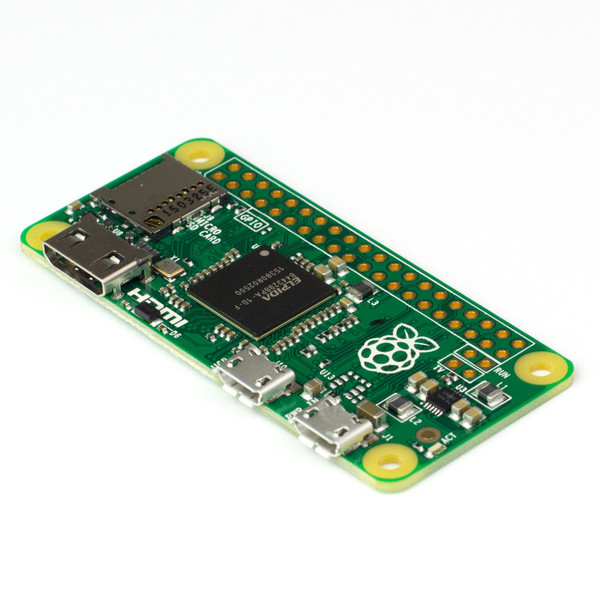
The Raspberry Pi Foundation’s $5 barebones computer remains ever-elusive for many would be buyers. Almost as quickly as the device goes back in stock it sells out again.
On Wednesday 24 February, The Pi Hut is going to start selling a fresh batch of Pi Zero stock, and you’ll have not one, but two chances to get your hands on the desirable little piece of kit.
The Pi Hut launched a poll on Twitter to find out when followers would like the stock to be made available, and the result was so close the company has decided to go for a "double launch".
There will be two batches up for sale. 50 percent of the stock will be made available at 9.00am GMT/4.00am EST/1.00am PST, and the remaining 50 percent will be up for grabs later the same day at 7.00pm GMT/2.00pm EST/11.00am PST.
As always, despite a one Pi Zero per customer limit, demand is sure to quickly outstrip supply so you might want to turn up early.
If you manage to get a Pi Zero there’s a chance it will go out of stock before you get to the checkout. If that happens, The Pi Hut recommends hitting the F5 key which will refresh the page and might result in you getting stock allocated to you. Well, it’s worth a try.
If all else fails, you can always use this trick to find where else the Pi Zero might be in stock.
-

Microsoft's Bill Gates sides with FBI in Apple iPhone unlocking row, likens it to 'cutting a ribbon around a hard disk'
Publié: février 23, 2016, 12:10pm CET par Wayne Williams
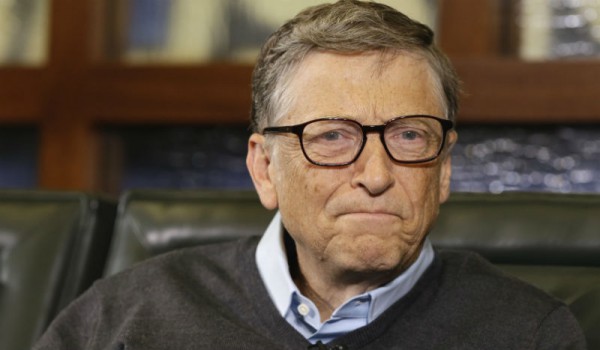
The debate about whether Apple should help the FBI to access content stored on an iPhone used by one of the San Bernardino shooters rumbles on. Based on our poll, the majority of BetaNews readers are against Apple cracking the phone (67 percent say no, 30 percent say yes, and 3 percent are currently undecided), and most tech firms have expressed similar sentiment.
But in an interview today with the Financial Times (story behind a paywall) Microsoft co-founder Bill Gates has come out firmly on the side of the FBI.
"This is a specific case where the government is asking for access to information", Gates says. "They are not asking for some general thing, they are asking for a particular case. It is no different than [the question of] should anybody ever have been able to tell the phone company to get information, should anybody be able to get at bank records. Let’s say the bank had tied a ribbon round the disk drive and said, 'Don’t make me cut this ribbon because you’ll make me cut it many times'".
It seems the tide of public opinion may be turning against Apple. Pew Research Center has today released a study that shows 51 percent of Americans believe Apple should assist the FBI and unlock the shooter’s iPhone 5c, while just 38 percent think Apple shouldn’t.
-

How to get total control over Windows 10's automatic updates
Publié: février 22, 2016, 9:20pm CET par Wayne Williams
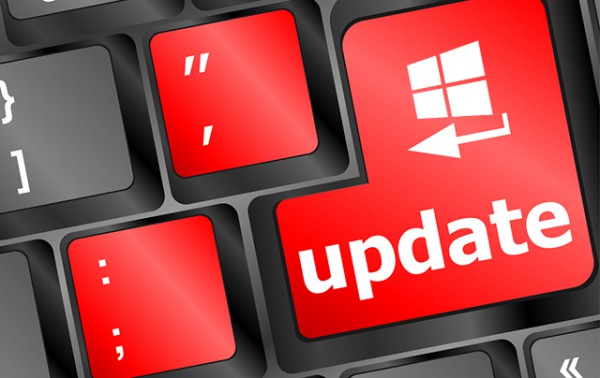
One of the (many) things that divides opinion about Windows 10 is Microsoft’s decision to make updates mandatory. If you have Windows 10 Pro, Enterprise or Education editions you can defer updates, but you can’t reject them outright.
Windows 10 Home users don’t have this luxury and updates are installed automatically once they become available.
It’s easy to understand why Microsoft has taken this step. Reducing the number of unpatched systems in the world is good news for everyone.
Unfortunately, the software giant does occasionally push out updates that cause problems for some users, so it’s far from a perfect solution.
If you’re unhappy with Microsoft forcefully installing updates on your system without your say so, you can block this function using the latest version of W10Privacy.
If you haven’t heard of this program before it’s well worth checking out as the software gives you control over Windows 10’s many privacy functions, allowing you to prevent the OS snooping on what you do. Options are color coded so you can see at a glance whether something is safe to change/disable or not.
In W10Privacy 2, you can now set the program to disable Windows 10’s own update mechanism and replace it with its own. Users can choose which updates to install, and which to ignore. This isn't something everyone should do, but you can easily reverse the steps should you need to.
Before you can use this function, you need to download some additional components. Follow these steps:
- Download W10Privacy 2 and unzip it to a folder on your hard drive.
- Download PsExec and copy it into the W10Privacy folder.
- Download the Windows Update PowerShell Module from Technet, and unzip it to a subfolder in the W10Privacy folder.
- Right-click W10Privacy.exe and choose Run as administrator from the context menu. Choose to make a system restore point. It’s also worth making a full system backup (just in case).
- Go to Extras > Windows Updates to manage the options.
There are six different check boxes. None are enabled by default. They are:
- PSWindows Update module exists (must be provided previously by user to the W10Privacy folder).
- PsExec.exe in W10Privacy folder (must be provided by user).
- W10Privacy adaption of the PSWindows-Update Module.
- Configure fake WSUS server.
- W10Privacy is located in a path/folder without spaces.
- Do not consider drivers in Update Search.
Assuming you want to manage updates manually, check the first five options. The sixth option lets you decide whether to list drivers alongside updates. This is up to you.
Click Set changed settings then click the Start checking for updates button and you’ll be shown any new updates that have yet to be installed and can choose what action to take.
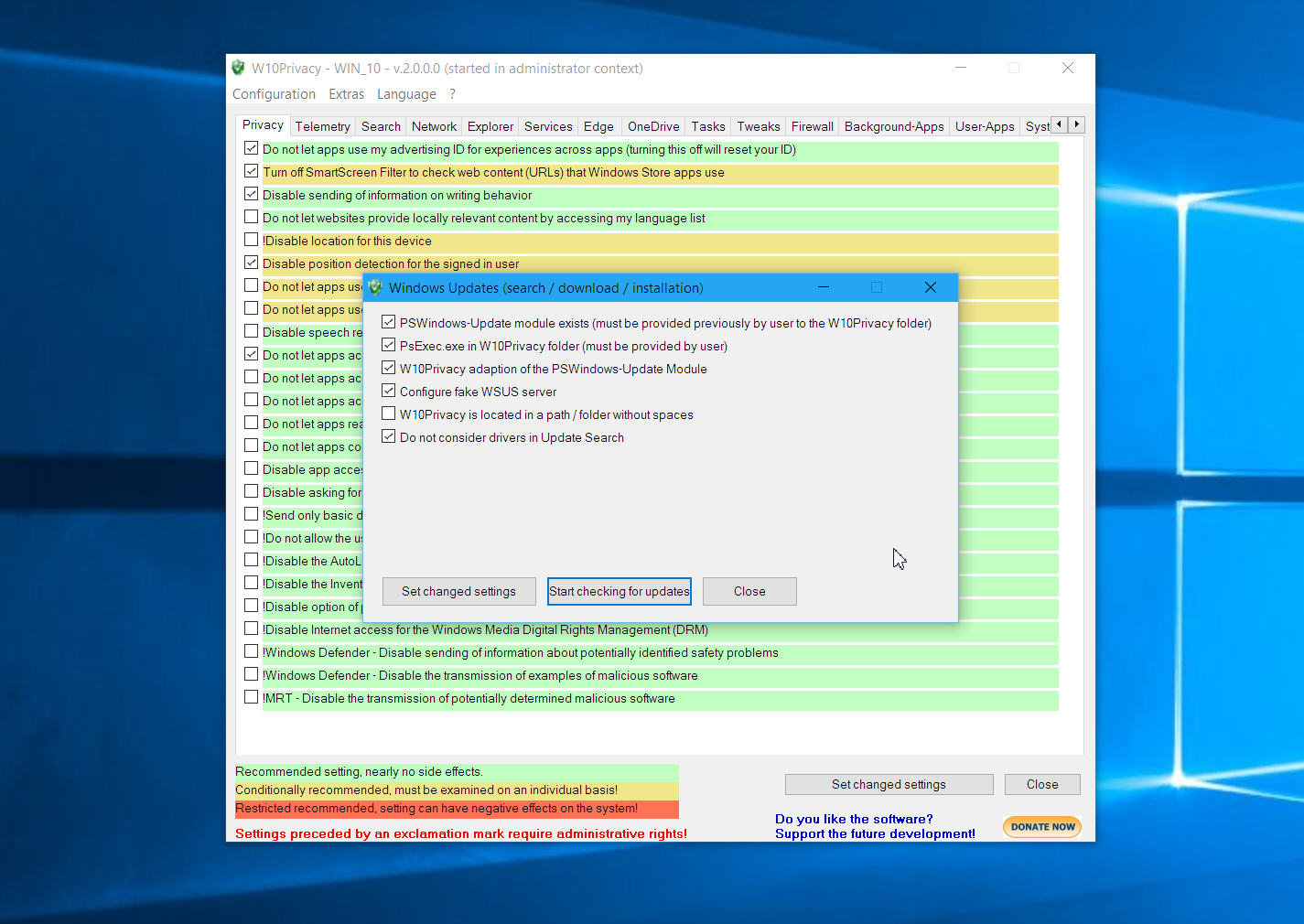
Once you’re in charge of your updates, run the software regularly and check to make sure you don’t miss any important updates.
Photo Credit: fotoscool/Shutterstock
-

Problems booting up Windows 10 Insider Preview Build 14267? Here's a quick fix
Publié: février 22, 2016, 8:59am CET par Wayne Williams
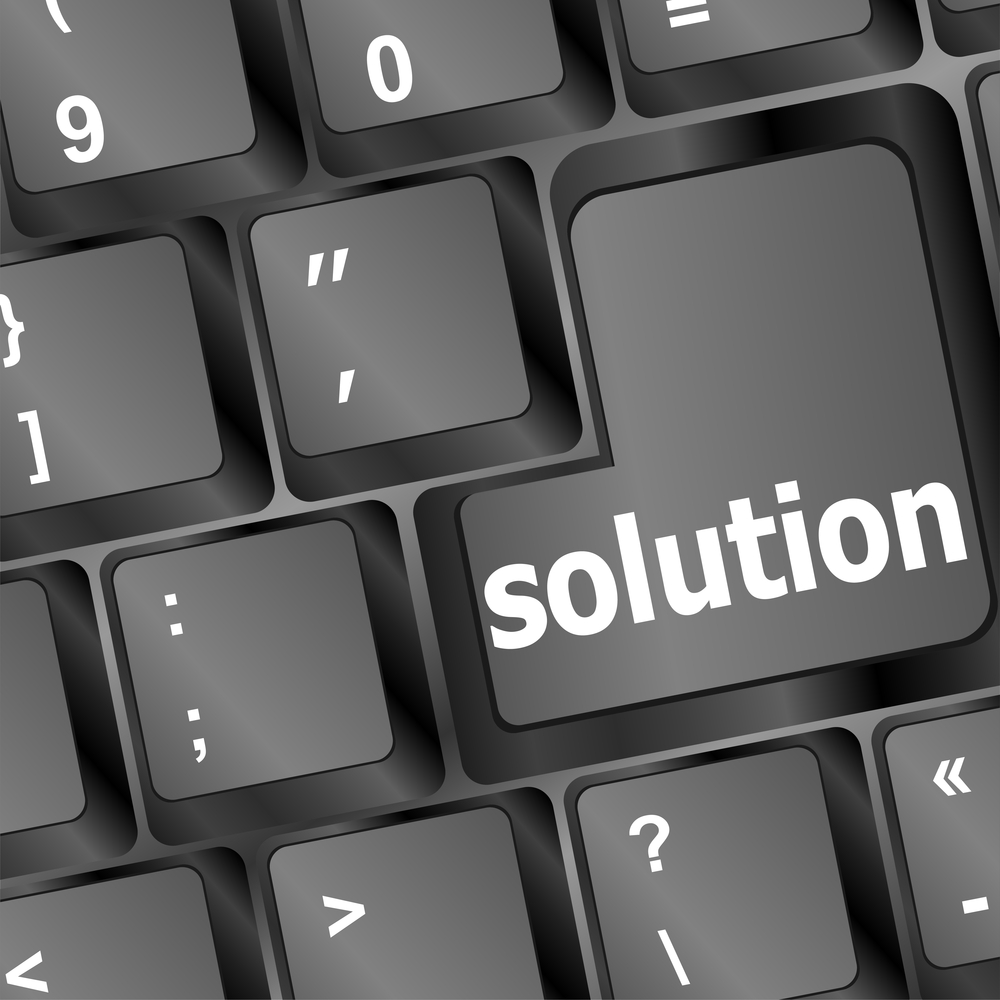
Microsoft has been rolling out new Windows 10 Insider Preview builds to the Fast ring at a rate of about one a week for the past month or so.
The latest build, 14267, introduced some welcome improvements, including three additions to Microsoft Edge, but it also added a fast startup bug which has stopped some users being able to boot Windows.
If you’ve experienced this annoying problem (which Microsoft says will be addressed in a future build), there is a temporary workaround. All you need to do is:
- Right-click Start, and select Power Options in the menu.
- Click the Require a password on wake-up link on the left.
- Click the Change settings that are currently unavailable link.
- Uncheck Turn on fast start-up (recommended).
- Click the Save changes button.
- Shutdown your PC, then start it again and login.
Naturally, disabling fast startup means Windows 10 will take a little longer to boot, but at least it should now start without problems.
Photo Credit: fotoscool/Shutterstock
-

Warning! Linux Mint hacked -- operating system compromised
Publié: février 21, 2016, 9:32am CET par Wayne Williams

Linux Mint is one of the best distos around, but if you’ve installed it recently you might have done so using a compromised ISO image.
The Linux Mint team today reveals that hackers made a modified Linux Mint ISO with a backdoor in it, and managed to hack the Mint website so it pointed to this bad version.
There is some good news however, and that’s the Linux Mint team managed to discover the intrusion and take action quickly. The site is currently down.
It also only (as far as the team knows) affects the one edition -- Linux Mint 17.3 Cinnamon. If you downloaded a different release or version, or downloaded the OS via torrent or different direct HTTP link, you should be fine.
Also, the compromised version was only up on the site on the 20 February -- so if you downloaded Mint before or after then, you don't need to worry.
Mint says the hacked ISOs are hosted on 5.104.175.212 and the backdoor connects to absentvodka.com. Both are in Sofia, Bulgaria. The team is investigating the hack, but the reason for it remains a mystery for now.
"What we don’t know is the motivation behind this attack," Mint admits. "If more efforts are made to attack our project and if the goal is to hurt us, we’ll get in touch with authorities and security firms to confront the people behind this".
If you’re worried you might have downloaded and installed a compromised version Mint advises you check by following these instructions:
If you still have the ISO file, check its MD5 signature with the command "md5sum yourfile.iso" (where yourfile.iso is the name of the ISO).
The valid signatures are below:
6e7f7e03500747c6c3bfece2c9c8394f linuxmint-17.3-cinnamon-32bit.iso
e71a2aad8b58605e906dbea444dc4983 linuxmint-17.3-cinnamon-64bit.iso
30fef1aa1134c5f3778c77c4417f7238 linuxmint-17.3-cinnamon-nocodecs-32bit.iso
3406350a87c201cdca0927b1bc7c2ccd linuxmint-17.3-cinnamon-nocodecs-64bit.iso
df38af96e99726bb0a1ef3e5cd47563d linuxmint-17.3-cinnamon-oem-64bit.iso
If you still have the burnt DVD or USB stick, boot a computer or a virtual machine offline (turn off your router if in doubt) with it and let it load the live session.
Once in the live session, if there is a file in /var/lib/man.cy, then this is an infected ISO.
You can read more about the hack here.
Photo credit: v.gi / Shutterstock
-

Poll: Should Apple help the FBI unlock the San Bernardino iPhone?
Publié: février 19, 2016, 1:11pm CET par Wayne Williams
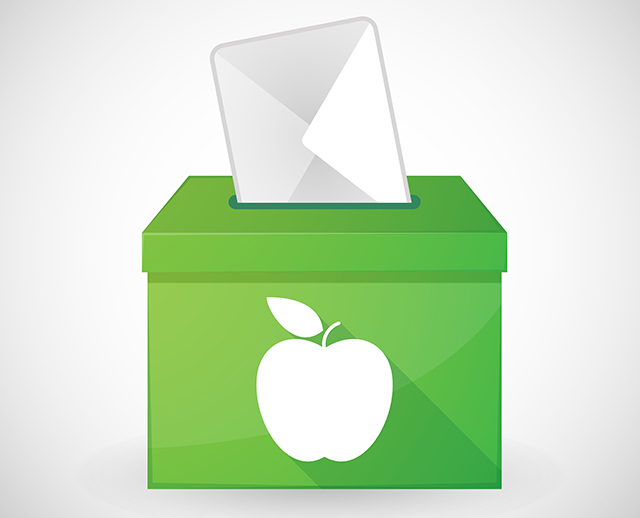
The US courts say Apple should help the FBI access the contents of an iPhone belonging to one of the San Bernardino shooters, but Apple is refusing, on the grounds that it doesn’t want to erode the security of Apple customers.
I’m personally on Apple’s side, as is my colleague Joe Wilcox, but Donald Trump wants Apple to use "common sense" and open its phone up, while John McAfee is claiming he can help the FBI unlock Apple’s device within "three weeks", primarily through the use of social engineering. The FBI for its part says it doesn’t want Apple to create a backdoor in all iPhones, just unlock the one belonging to the killer.
Apple has reportedly been given more time to respond to the court order, and prepare its defense, so the situation isn’t likely to be resolved either way anytime soon.
BetaNews readers have commented on the topic in both mine and Joe’s stories, but what I’d like to know is what the overall consensus is. Are you on the side of Apple here, or do you think the company should open up the iPhone and help the FBI?
Cast your vote and leave a comment below explaining the reason for your view.
Note: There is a poll embedded within this post, please visit the site to participate in this post's poll.Photo credit: Blablo101 / Shutterstock
-

Mobile operator Three to block ads at the network level
Publié: février 19, 2016, 11:51am CET par Wayne Williams
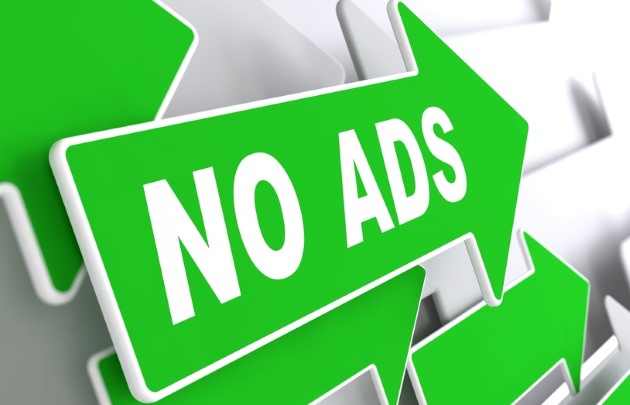
Ad blocking has been going on for years, but it’s risen in popularity a lot lately, thanks in part to Apple allowing ad blockers into the App Store. Popular content blocker Adblock Plus has been having conversations with advertisers recently too and is looking to discover just why people block ads on the web.
In an interesting move, mobile network operator Three has announced that it will be using ad blocking technology created by Israeli startup Shine to block adverts on a network level.
The technology will be implemented by Three UK and Three Italy initially (there are plans to roll it out to other Three Group operators in the future) and will, the company says, give customers "more control, choice and greater transparency" over which adverts appear on their devices.
While advertisers will, naturally, be unhappy with this move, the goal isn’t to eradicate advertising on Three devices entirely, just block the worst examples.
The company says it has three principal goals when deploying ad blocking:
- That customers should not pay data charges to receive adverts. These should be costs borne by the advertiser.
- That customers’ privacy and security must be fully protected. Some advertisers use mobile ads to extract and exploit data about customers without their knowledge or consent.
- That customers should be entitled to receive advertising that is relevant and interesting to them, and not to have their data experience in mobile degraded by excessive, intrusive, unwanted or irrelevant adverts.
Tom Malleschitz, Chief Marketing Officer, Three UK, says: "Irrelevant and excessive mobile ads annoy customers and affect their overall network experience. We don't believe customers should have to pay for data usage driven by mobile ads. The industry has to work together to give customers mobile ads they want and benefit from. These goals will give customers choice and significantly improve their ad experience".
Photo credit: Tashatuvango / Shutterstock
-

Windows 10 Insider Preview Redstone Build 14267 arrives on the Fast ring -- and brings welcome improvements
Publié: février 18, 2016, 7:53pm CET par Wayne Williams

After a flurry of new builds, Insiders on the Fast ring have had to wait a whole two weeks for the latest Windows 10 update to arrive.
Unlike previous Fast ring releases, which focused on updates to OneCore (the core that Windows 10 shares across devices) and preparing the ground work for future additions, like extensions, Build 14267 actually has some improvements worthy of note, including several usability enhancements to Microsoft Edge.
SEE ALSO: Microsoft announces a third ring for Windows 10 Insiders -- 'Release Preview'
We’ll get to Microsoft’s browser in just a second, but first there’s a tweak to Cortana which is worth a mention. The software giant’s personal assistant is able to identify and search for music you’re playing (a bit like Shazam), and in the new build you can now add a music search icon to the top right of Cortana that will allow you to quickly start her listening.
There are Messaging + Skype improvements in the new build as well. You can now easily attach photos to new Skype messages as you compose them, and take and attach photos using the Camera app.
As for the Edge improvements, there are three: Right-clicking the Favorites bar now lets you choose to just show favicons, or add new folders; download prompts will allow you to choose where to save a file; and Edge can now automatically clear browsing data when you close it. Setting Edge to clear this data is done by clicking the three dots at the top right, going into Settings, and clicking the 'Choose what to clear' button under ‘'Clear browser data'.
There have been a handful of fixes made in this new build too. Microsoft lists the following:
- Choosing "Reset This PC" under Settings > Update & Security > Recovery should now work as expected.
- You should no longer see a WSClient.dll error dialog after logging in.
- The front-facing camera should be usable again on PCs with Intel RealSense cameras and you should be able to use Windows Hello again.
- Fixed an issue where incorrect storage capacity was provided for the system volume (the hard drive in which Windows is installed on) under Settings > System > Storage.
Fast ring releases usually have a whole bunch of known issues to be aware of, but this time there’s just the one:
If you’re using Hyper-V and upgrade to this build with more than one vswitch or have multiple virtual networking adapters (including legacy), you may lose networking connectivity after upgrade.
Fortunately Microsoft has a solution:
To get network connectivity back, there are two workarounds available:
- Remove all the virtual network adapters connected to the vswitch, delete the vswitch and recreate it, then reconnect their virtual NIC to the new vswitch.
- Admin command prompt, do "netcfg -d" will wipe-out all the vswitch settings so that you can start from scratch.
Photo credit: charnsitr / Shutterstock
-

Microsoft's Surface Book goes on sale in the UK
Publié: février 18, 2016, 11:00am CET par Wayne Williams
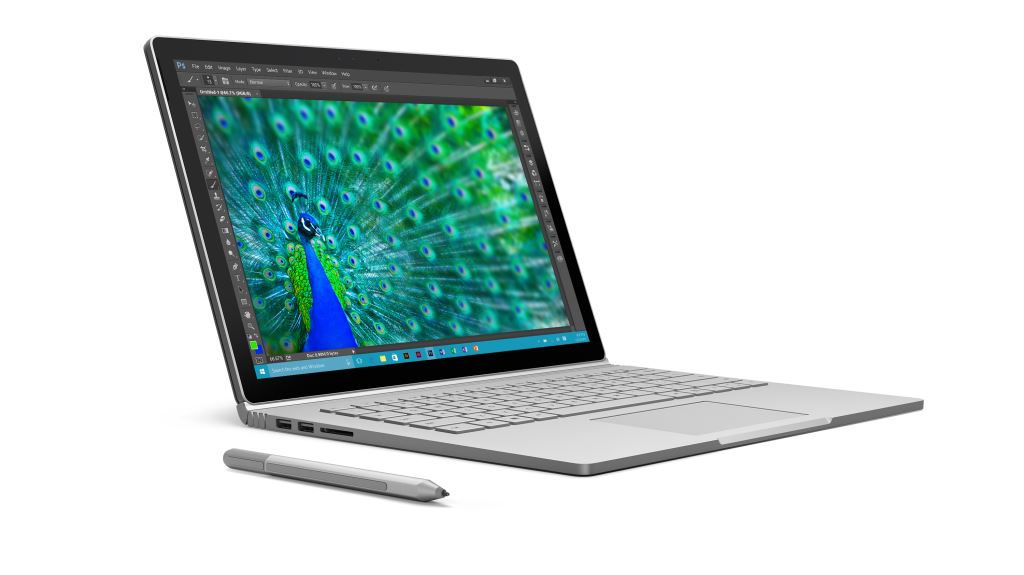
Surface Book, Microsoft’s hybrid laptop/tablet combo, officially launches in the UK from today.
If you're not familiar with it, the device has a detachable screen, a hinge that divides opinion (some people think it looks great, others hate it), and enough power to suit most users’ needs. It has a 13.5-inch PixelSense touchscreen display with a 3:2 aspect ratio that makes it great for getting "real work" done.
If you're thinking of buying one, be warned it’s a little pricey. The base model, with a Core i5 processor, is priced at £1,299, while the top of the line model, which boasts a Core i7 processor and a dedicated NVIDIA GeForce GPU, will set you back an even more wallet-worrying £2,249.
Surface Book is available to buy today through Microsoft's online store and various other popular retailers, including Amazon, John Lewis and Currys PC World.
-

Google wants you to 'Gmailify' your non-Gmail email accounts -- but should you?
Publié: février 17, 2016, 7:38pm CET par Wayne Williams
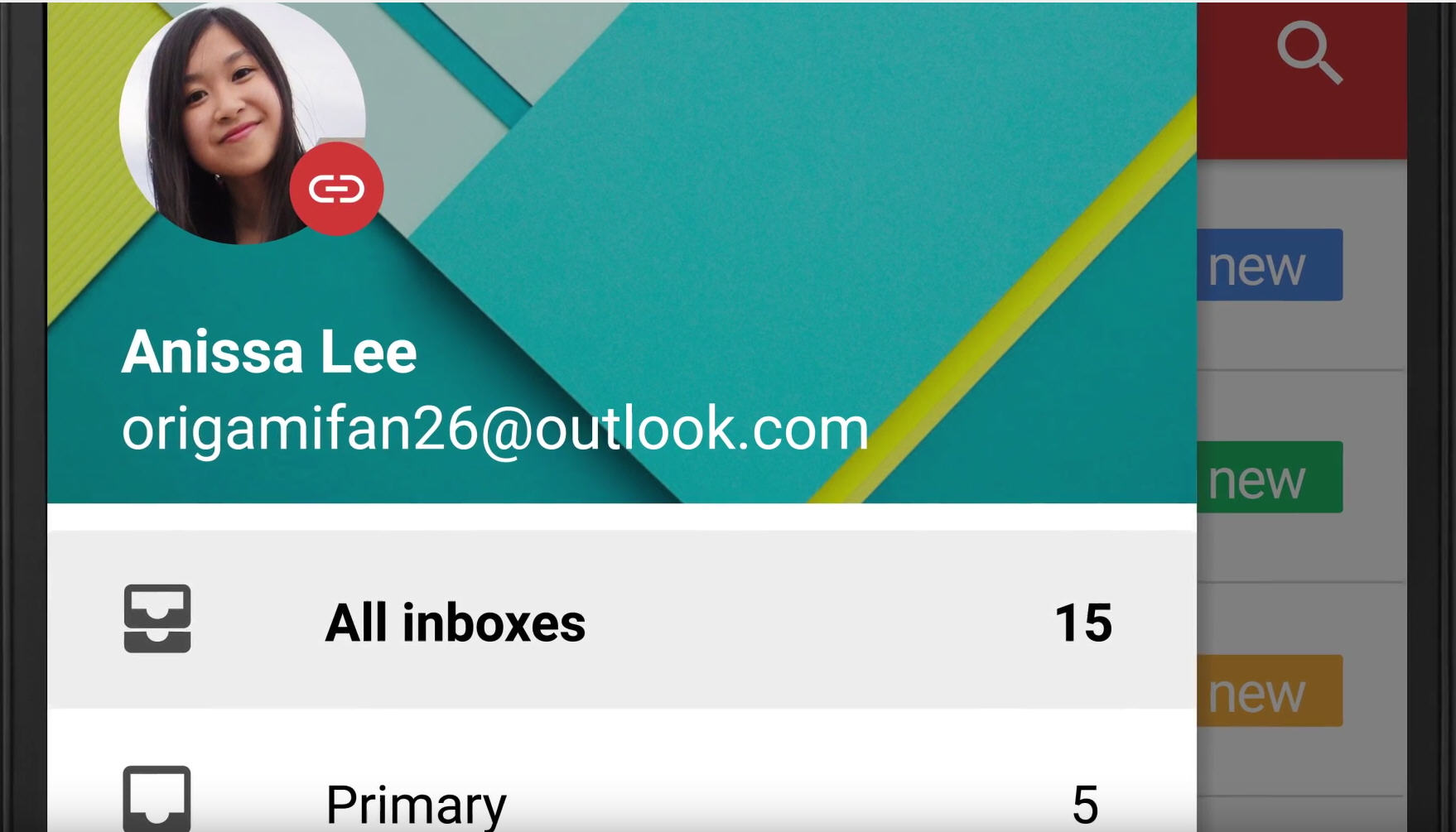
While Gmail is the most popular webmail service in the world, not everyone uses it. Plenty of people prefer to get their email through Outlook.com or Yahoo Mail.
Google would like you to use its service -- naturally -- but understands you may not want to go to the hassle of switching, or changing your email address. This is where Gmailify comes in. Link your existing Microsoft or Yahoo webmail account through it (support for other email providers is planned), and you’ll get all of the benefits of Gmail without needing a Gmail address.
Those benefits, according to Google, include:
- Gmail's spam protection
- Automatically sorting email based on type (Social, Updates, Promotions)
- Faster search, with advanced search operators
- Travel and hotel reservations appearing automatically in Google Now
- All your mail in one place.
- Better mail notifications on mobile
Gmailify is Android only for now, and to get it up and running you’ll firstly need to install the Gmail app, and then add your non-Gmail account. Once done, follow these instructions:
- On your Android phone or tablet, open the Gmail app.
- In the top-left, open the Hamburger Menu.
- Scroll down and tap Settings.
- Tap the non-Gmail account you’d like to link.
- Tap Link account.
Emails sent to the linked address will appear in both the Gmail Android app, and on the web at mail.google.com.
While the benefits of Gmail are great, let’s not overlook the fact that there’s a reason why Google wants to Gmailify non-Gmail accounts. This way it gets to scan your messages and get its hands on your data which, understandably, you may not be too keen on. If you prefer the look of your existing email app, then you probably won't be in a rush to start using the Gmail app either.
It kind of reminds me of Google Chrome Frame, an add-on from a few years ago which installed Google's web browser inside Internet Explorer.
What's your view of Google's latest move? Will you be Gmailifying your non-Google email accounts?
-

Microsoft announces a new Windows 10-friendly Wireless Display Adapter
Publié: février 17, 2016, 6:28pm CET par Wayne Williams
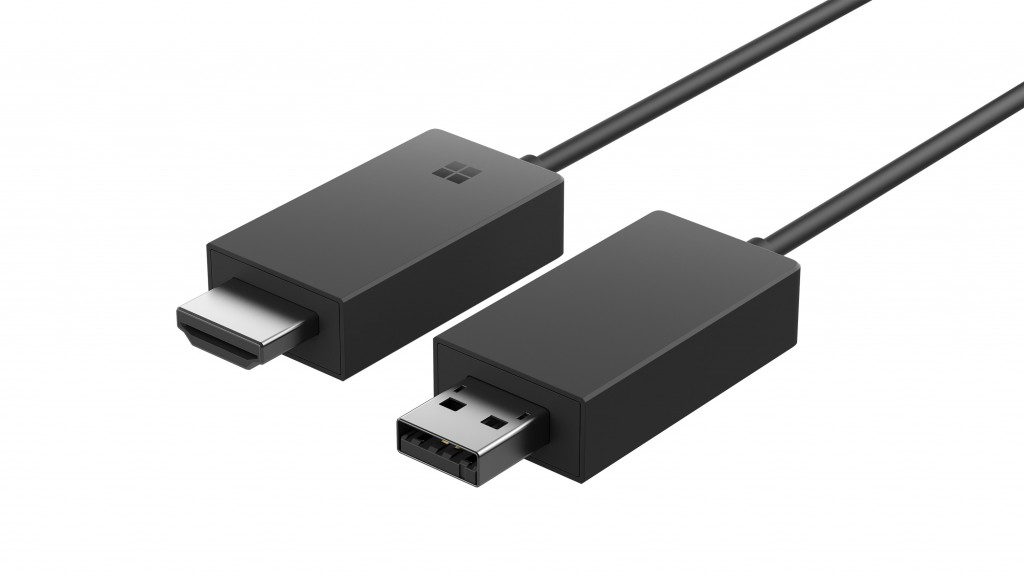
Microsoft launched its original Wireless Display Adapter back in 2014. The accessory allows anyone to wirelessly beam content from a Miracast-enabled device -- be it a tablet, smartphone or laptop -- directly to a big screen TV. It functions in a similar fashion to the Chromecast, but while Google's dongle works best with apps that support it, Microsoft's product uses Miracast technology and doesn't require individual app support.
Today the tech giant announces plans for an updated model. So what’s changed?
While Microsoft says it’s just as easy to set up and use as its predecessor, the new edition has been completely redesigned (it's smaller, and more stylish), and promises to reduce latency. Naturally, there’s a Windows 10 twist too, as Microsoft says the device will allow users to "mirror or extend their screen from Miracast-enabled Windows 10 phones, tablets and laptops, including the Surface lineup".
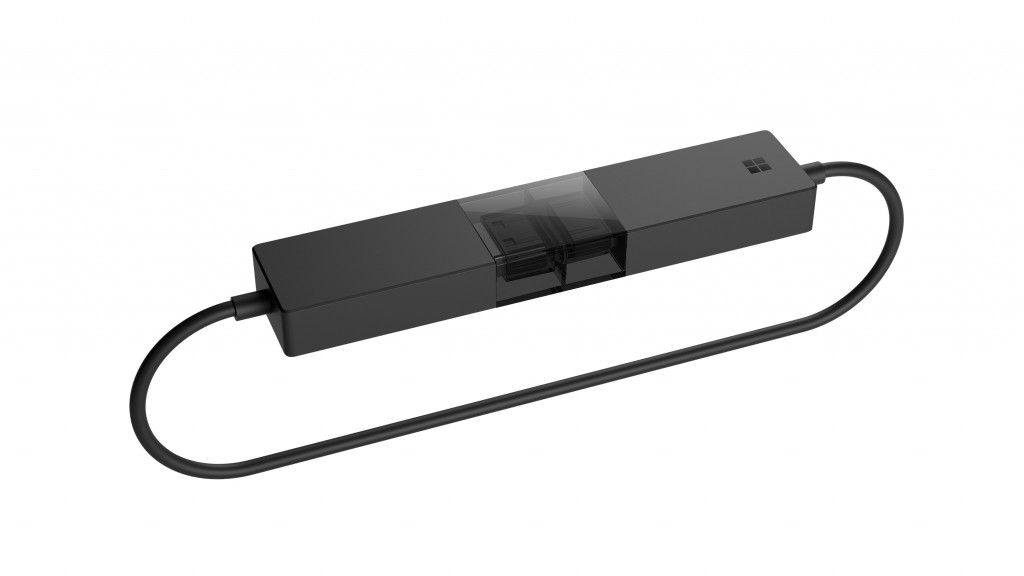
The Microsoft Wireless Display Adapter is available to pre-order now in the US and Canada, and it will be available to buy from March 1. It’s priced at $49.95, which is $10 cheaper than the original retailed for, and you’ll be able to pick one up from Microsoft Store, Best Buy and Amazon, as well as other retailers down the line.
Microsoft says it will be available in additional markets "soon".
-

Microsoft's Lego-like PC makes upgrading super-easy
Publié: février 16, 2016, 1:44pm CET par Wayne Williams

Part of the reason the PC was originally so successful is down upgradability, and that’s still a factor today. If your computer starts to run a little sluggish, you can always add more RAM, or swap your HDD for an SSD. Some PCs are easier to upgrade than others, but Microsoft is looking into a way to make upgrading so easy that absolutely anyone could do it.
The idea is a modular computer that consists of magnetic units that you can snap off without the use of tools and replace with newer, better components. Not unlike building a PC from Lego.
The software giant filed a patent for a Modular Computing Device in July year, and it was published a few days ago. The patent describes the proposed system as:
A computing device comprising: a display modular component including a housing, a display device physically and communicatively coupled to the housing via a hinge, and one or more display hardware elements disposed within the housing and configured to output a display for the display device; and a computing modular component including a housing that is physically and communicatively coupled to the display modular component, a processing system disposed within the housing, and memory disposed within the housing, the processing system configured to execute instructions stored by the processing system to generate a user interface for display by the display device of the display modular component, the processing system and the memory being swappable within the housing of the computing modular component.
Got that? The diagram below makes things easier to visualize.
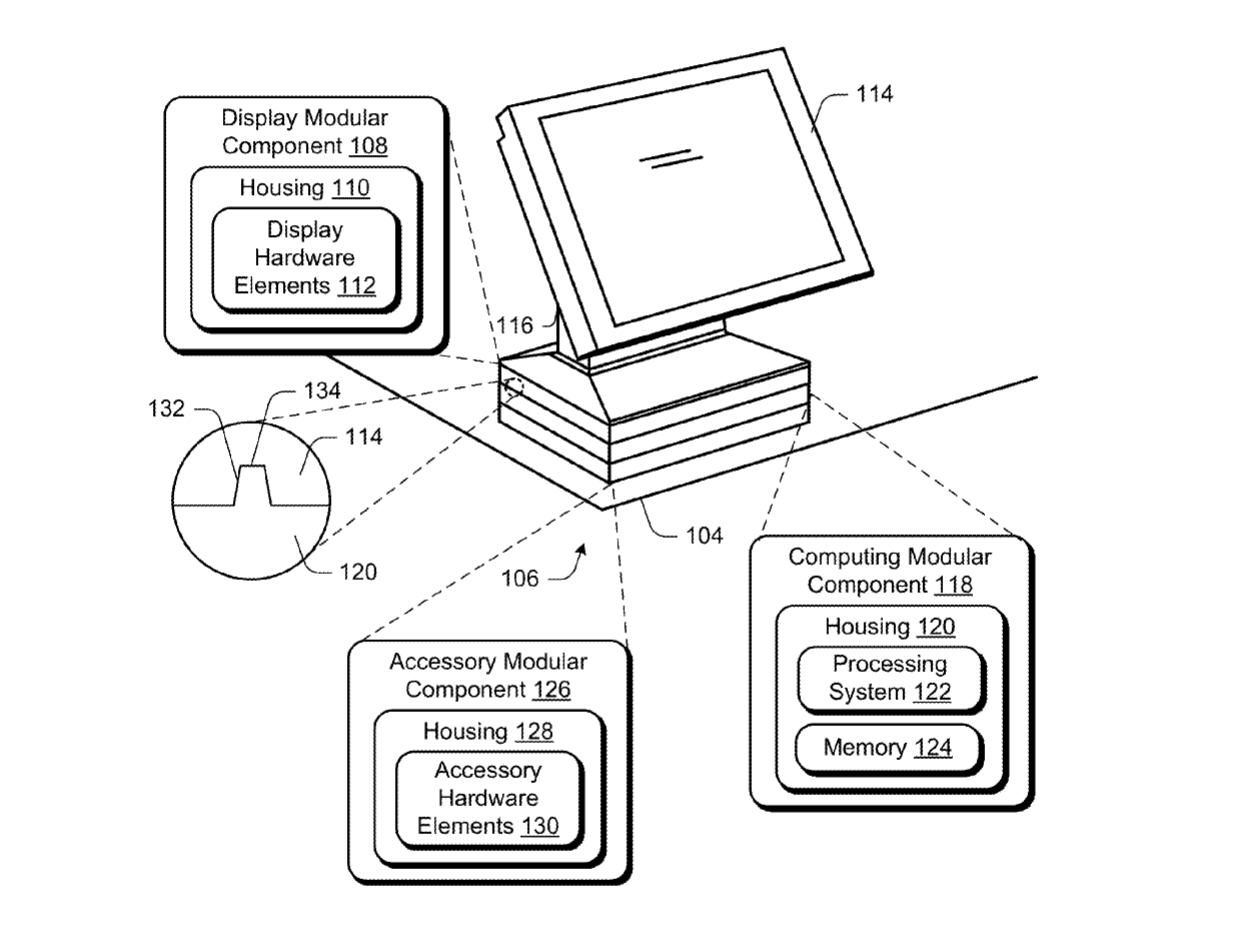
Microsoft hardware is on a roll at the moment, with both Surface Pro 4 and Surface Book doing well, and this modular PC patent lists Tim Escolin, a senior designer on Microsoft’s Surface devices team, as one of its authors.
The idea of a modular system such as this is far from new (anyone remember Project Christine?) and Google’s Project Ara is a similar idea for smartphones, but this looks really good, and I’d love to see it turned into something you can actually buy.
Photo credit: Vector3D / Shutterstock
-

The Vega+ is a handheld ZX Spectrum packed with retro goodness
Publié: février 16, 2016, 12:24pm CET par Wayne Williams
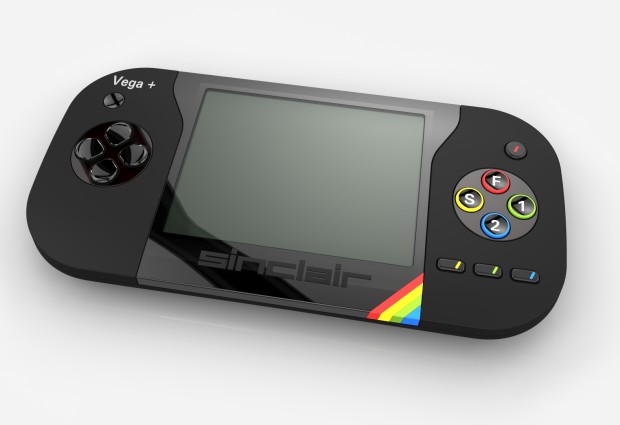
If you grew up in the UK in the 1980s, you likely either had a Sinclair ZX Spectrum or a Commodore 64. I was firmly in the Spectrum camp, and whiled away much of my youth playing classics such as Jet Set Willy and Skool Daze.
Retro Computers, led by Sir Clive Sinclair, last year resurrected the Spectrum in the form of the Vega, and this year it’s following up that low-cost games computer with a handheld model -- the Vega+.
The portable games console has a built-in LCD screen (but can still be connected to your TV if you want to play it on there) and comes with over 1,000 games built in, with another 14,000 tiles available to download.
Sir Clive Sinclair says: "The present surge of interest in retro products inspired me to plan the Vega+ as a handy games console which can be played anywhere".
It’s been designed by Rick Dickenson, who worked on the original Sinclair computers back in the 1980s.
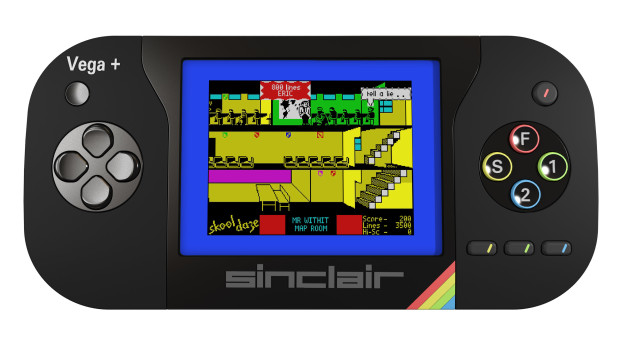
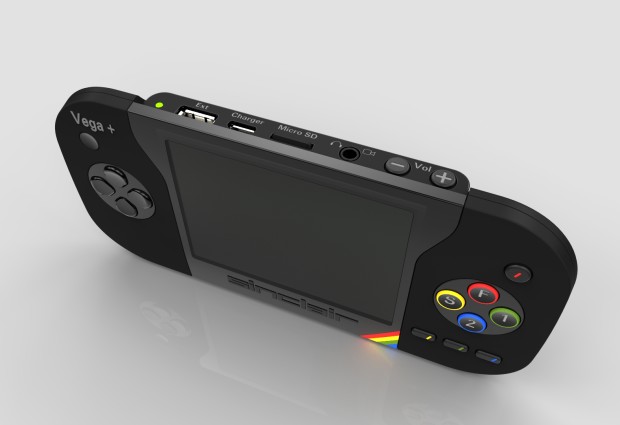
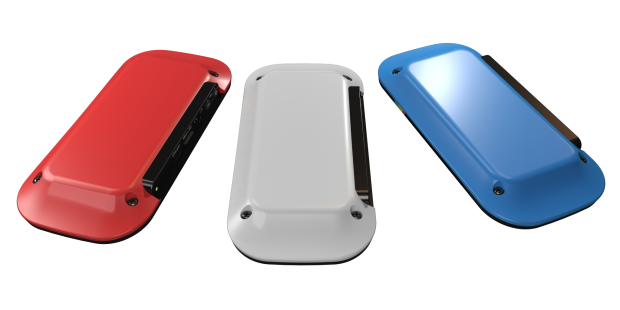
The development of the Vega+ is complete and there’s a fully working prototype waiting to go into production in the UK. Retro Computers is currently crowdfunding through Indiegogo and has already raised over £23,000 of its £100,000 flexible goal with a month to go.
It will retail for around £100, when available.
-

Has Windows 10 reset your default apps back to Microsoft stock?
Publié: février 16, 2016, 11:11am CET par Wayne Williams

Yesterday, The Inquirer reported on how Windows 10 was resetting some changed app defaults back to Microsoft’s own bundled universal apps.
In the primary example given, image viewer Irfanview was displaced by Windows 10’s own Photos app, a change that had been instigated, it seems, by cumulative update KB3135173.
It’s not a change I’ve personally experienced, mainly because Photos is the one Microsoft app I still have as the default, and none of my other defaults have altered after installing that update either. But that said, it would hardly be a first for Microsoft.
Since I updated Windows to the new OS I’ve found myself having to change the default apps back to my preferred choice on more than one occasion. Microsoft Edge in particular was a pain, once refusing point blank to relinquish the default web browser spot even though I had changed it in both Settings and Control Panel, and no one in their right minds would opt to use that half-baked browser as the default when there’s the infinitely superior Chrome and Firefox available.
Edge also desperately wanted to be the default PDF viewer, despite my having an actual PDF viewer installed, and sneakily reclaimed that spot too.
Fortunately, Edge Blocker came to the rescue here, telling Microsoft Edge in no uncertain terms it wasn’t required.
SEE ALSO: Microsoft forcing Windows 10 onto people is wrong
Windows 10 hasn’t changed my default apps for a while now, which makes The Inquirer’s story interesting to me. Is the 'new' problem isolated to just a few unfortunate users or is it more widespread?
Have you experienced an issue with Windows 10 resetting your app defaults?
Photo Credit: wavebreakmedia/Shutterstock
-

How to find and buy the ever-elusive $5 Raspberry Pi Zero
Publié: février 15, 2016, 8:59pm CET par Wayne Williams
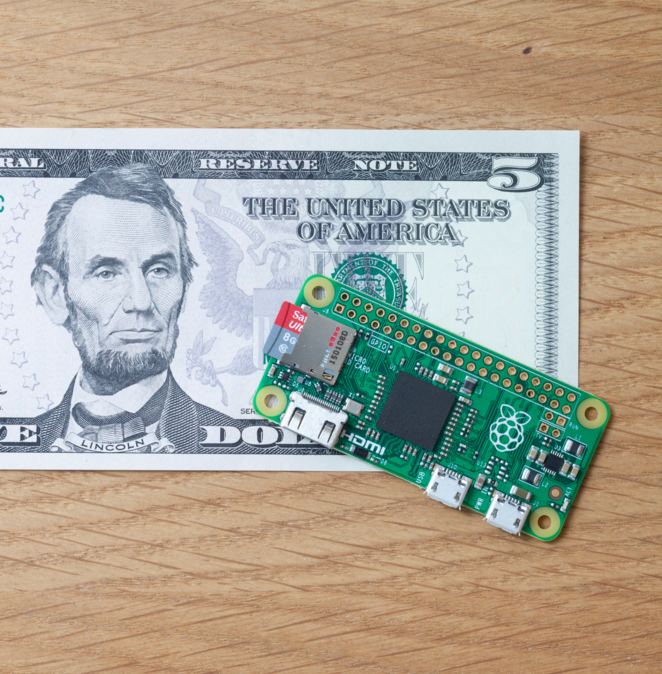
The Raspberry Pi Zero is incredibly hard to get hold off. Hardly surprising, when you consider its $5 asking price.
Retailers such as The Pi Hut do replenish their stocks on a semi-regular basis, but even so you’ll have to act fast as even with a one-per-customer restriction in place, they sell out again almost immediately. Fortunately, there is a clever way to find out where the Pi Zero is in stock.
Find My Pi takes the leg work (or rather the mouse and keyboard work) out of finding out where the Pi Zero is available.
It regularly checks for stock at all of the major suppliers -- Raspberry Pi Swag Store, Pimoroni, The Pi Hut, Adafruit, and element14 -- and tells you if there are any Pi Zeros available.
The chances are all of the stores will be reported as out of stock but check back regularly and you might just get lucky.
-

Changing the date could permanently brick your iPhone
Publié: février 11, 2016, 9:22pm CET par Wayne Williams
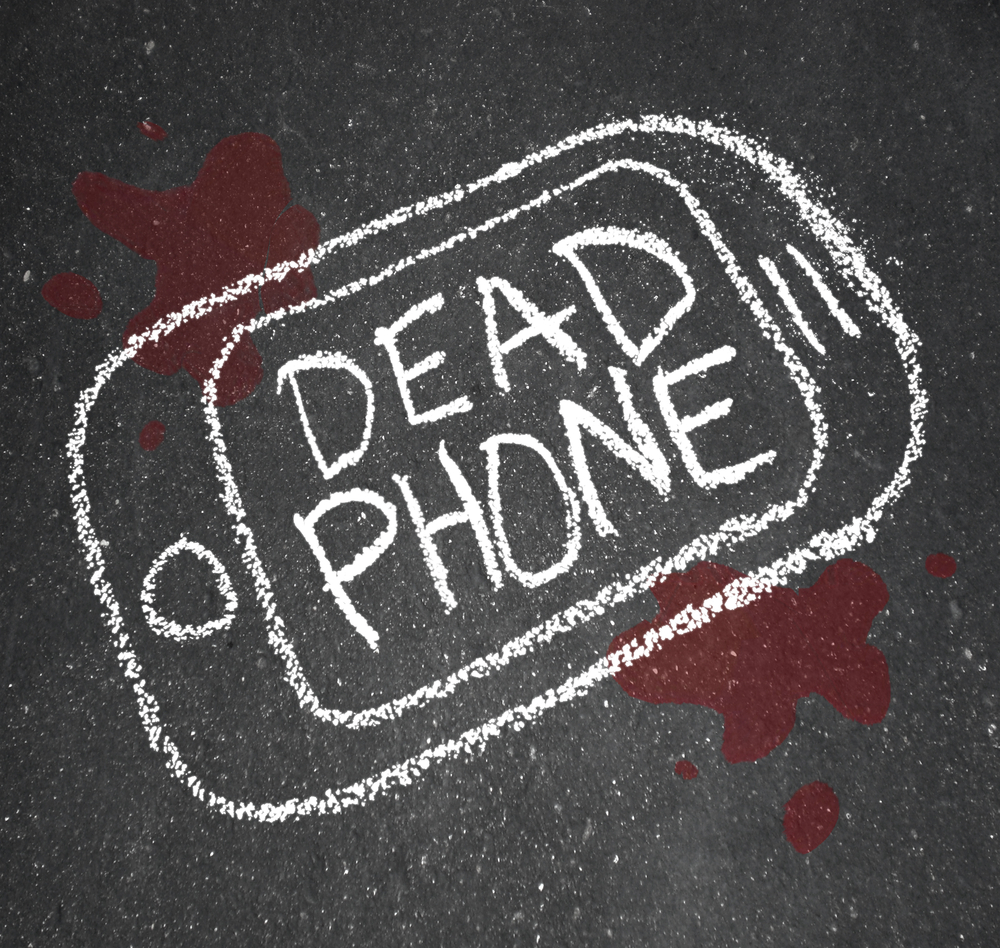
There have been a few serious iPhone issues discovered recently. Some phones got bricked by the iOS 9 Slide to Upgrade bug, there was a website that instantly crashed browsers and rebooted iPhones, and -- most recently -- Error 53 bricked devices repaired by non-Apple technicians.
Now a new iPhone-bricking bug has reportedly been discovered. And I say reportedly, because I’m certainly not about to try it.
According to a post on Reddit (and backed up by some reports in China), setting your device back to a particular date and time will brick it.
Now here comes the warning. It should go without saying, but trying this yourself will in all likelihood brick your device, and we wouldn’t want that. If you really want to do it, go ahead, but we really, really would advise against it. Obviously.
The bug, which only affects 64-bit Apple devices, including iPhones, iPads and iPod touches, rears its head when you set the date to January 1, 1970 (aka the Unix epoch). You do this by going to Settings > General > Date & Time and toggling off the option to set the date and time automatically. Scroll back to 2000, go back into Date & Time settings and repeat the process until you hit 1970.
Once you’re at the date, reboot your iPhone and it will (probably) die a sad and lonely death.
According to the reports, neither putting the phone into DFU mode nor restoring it from a backup fixes the problem. Although disconnecting the battery and reconnecting it, or letting it drain down fully might (again, we haven’t tested it).
Some people have reported that they’ve tried this and their phones have emerged unscathed.
A Reddit user speculates this might be down to time zones. He says:
For those who got away with trying this and it not bricking your device, there's a reason why -- time zones.
In some time zones, setting the date to 1 Jan 1970 will set the internal clock to a number less than zero, as the time is stored in GMT (as the number of seconds since midnight on that date) and then the offset is applied before display. In other time zones, setting the clock will result in a positive time value. Best guess is that this is triggered by having the time value less than zero.
Obviously this isn’t really a bug to worry about -- if you don’t ever set your device back to that date then nothing will happen. But maybe make sure you have a passcode or Touch ID set on your phone, to prevent malicious pranksters testing out this trick while your back is turned.
Photo Credit: iQoncept/Shutterstock
-

How B2B eCommerce is evolving in the cloud [Q&A]
Publié: février 11, 2016, 5:10pm CET par Wayne Williams
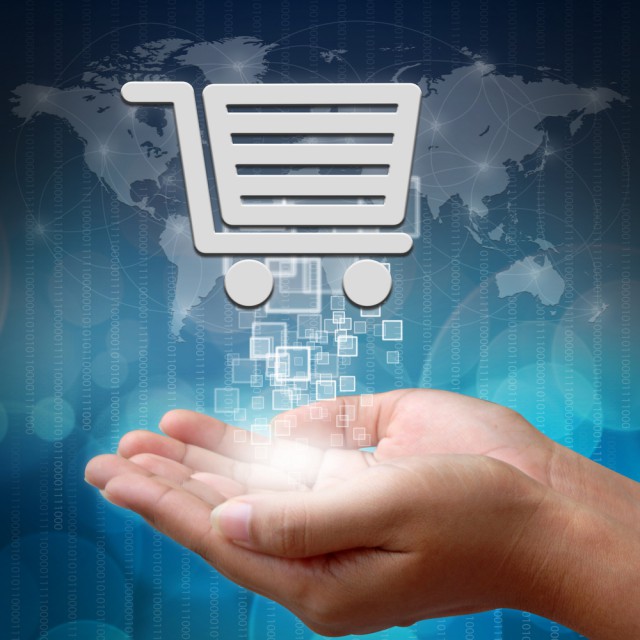
Modern IT architectures have opened commercial off-the-shelf software categories to new forms of innovation. But still, most B2B eCommerce solutions have yet to evolve. The result is that many firms are left with outdated, in-house infrastructures or bulky SaaS tools that hamper operations, leave customers unsatisfied and can’t keep up at the speed businesses demand. Developers today who work with B2B eCommerce tools gravitate toward cloud-based platforms that are more comprehensive, agile and customizable. This allows for the creation of services and workflows that meet their unique needs.
I spoke with Steve Davis, chief technology officer at Four51, which powers B2B eCommerce for over 10,000 businesses and nearly 20 million users, about what B2B eCommerce solutions should entail and what developers’ priorities are -- or should be -- when building a modern day eCommerce site.
BN: Can you elaborate on how modern IT architectures have changed the way companies operate?
SD: As companies upgrade their technologies to take advantage of current web, mobile and automation capabilities, most realize they need to update their technology stack. As such, increasingly these firms are seeking out cloud-based systems for their sales, marketing, eCommerce, ERP and other systems, and leveraging APIs as necessary to connect to other software and point solutions.
For example, now companies no longer have to build out complex tax logic in their own systems or build their own functionality for mobile since tax software such as Avalara or a mobile platform such as Twilio can be leveraged via API.
ProgrammableWeb has been tracking this "API Economy" for the past several years, and they’ve noted the growth of web APIs from fewer than 10 in 2005 to over 14,000 in 2015. That connective tissue, in that broad of an ecosystem, is new to the world and it is unlocking immeasurable efficiencies, innovation and growth.
BN: Despite these new forms of innovation, most B2B eCommerce solutions have yet to evolve. Why do you think that’s the case?
SD: Salesforce pioneered cloud technologies beginning in 1999, and initially the concept of the cloud was a tough sell, especially with the more conservative technology, security and back-office positions in the enterprise.
The cloud has now become pervasive primarily in the front-offices of sales and marketing, but the back-office has still been slow to adopt. Despite new forms of eCommerce innovation, they have been slow to catch on due to a false notion many enterprises have about the cloud and the fact that enterprises are unaware of the benefits in scalability, cost, and speed the cloud provides them.
Status quo has been easier for these large, risk-averse organizations, so they continue with their expensive, in-house or on-premise solutions controlled entirely by their own employees, rather than "renting" via subscription a lower cost SaaS or customizable PaaS solution.
Also, decision makers should consider that authoritative publications and research groups like the Wall Street Journal and Gartner have made it clear that the cloud has significant IT security advantages over on-premise solutions.
BN: What makes cloud platforms a better answer for developers who work with B2B eCommerce tools? Are there any drawbacks?
SD: Three main drivers of cloud platforms as being superior for developers include the low cost of cloud, scalability and the connectivity APIs afford. The cloud is simply a more economical and scalable way to manage eCommerce. It also allows for updates more easily in the future.
The advent of REST APIs, coupled with cloud enables developers to build exactly what they want, integrate with existing systems and launch a superior solution for their customers.
BN: What would you say developers should prioritize in terms of tools for building modern day eCommerce?
SD: It is vital that developers maintain a high degree of agility. The capability to release software daily is essential. In order to accomplish that, teams must support continuous integration, automated regression testing and collaboration with customers. The ability to react to customer needs quickly will enable the delivery of the best experience possible.
Additionally, all software created must be usable on every device. Responsive web design is a requirement now and no longer just a "nice to have".
BN: What are the most important features and functionality?
SD: The most important features and functionality are in the eye of the beholder. The customer knows how they want to do business and the software created needs to support that explicitly. That requires a robust data model, exposed through an API, that can be leveraged to create the custom workflows. The software should be molded to your business practices rather than the business molding to the software.
BN: More generally speaking, how do B2B commerce systems fit into broader digital ecosystems?
SD: B2B eCommerce is emerging from its former spot in the back-office to a forward-looking, customer-facing technology. If you look at all industries today you’ll note the trend we call "Digital Self-Service".
This refers to technologies that enable customers to help themselves using friendly digital user interfaces. Whether you’re booking a flight, making a restaurant reservation, buying a ticket to a movie, or even purchasing your burger at McDonalds, the chance that you are doing it digitally via mobile, web or kiosk is higher than ever. B2B eCommerce is the next evolution of that journey -- now putting full digital self-service into the hands of B2B customers.
Photo Credit: Nonnakrit/Shutterstock
-

The Internet Archive now lets you run over 1,000 Windows 3.1 programs in your browser
Publié: février 11, 2016, 4:05pm CET par Wayne Williams
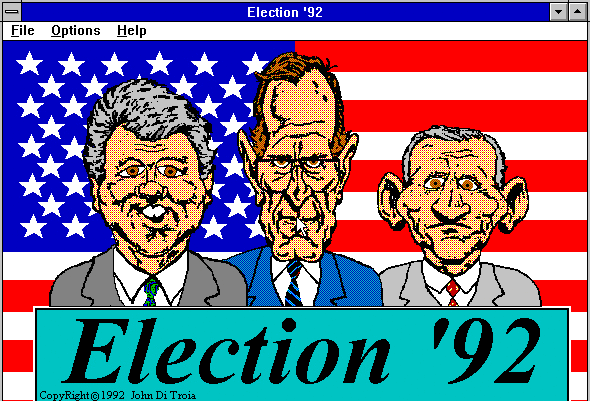
Windows 3.1 was the first version of Windows I ever used. The Internet Archive, which has over the past couple of years made it possible to play classic DOS games and console games in your browser, has just added over 1,000 Windows 3.1 programs to its catalog.
These include games, utilities and business software, and each can be run in your browser just by clicking on them.
Obviously, with over 1,000 titles to choose from, you’re going to be struggling to find the really good ones to try without a bit of help, but fortunately the Internet Archive has curated some of the best here.
Highlights of the Windows 3.x Showcase include a Windows 95 demo (something to look forward to!), Merlin: The Quest for the Wand, Election 92, Windows Adventure (a GUI edition of the classic Crowther and Woods' game), Taipei, and WinTrek.
If you prefer, you can browse the complete software library here.
Did you use Windows 3.1? If so what programs and games do you remember from "back in the day"?
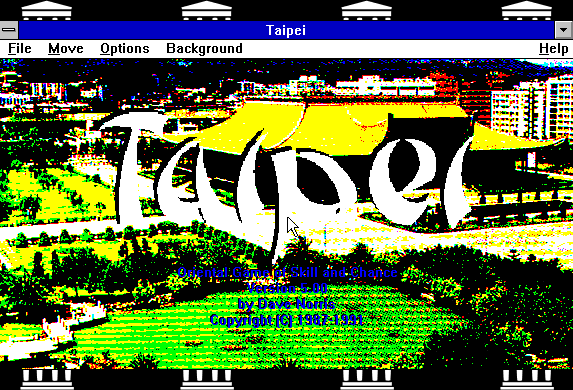
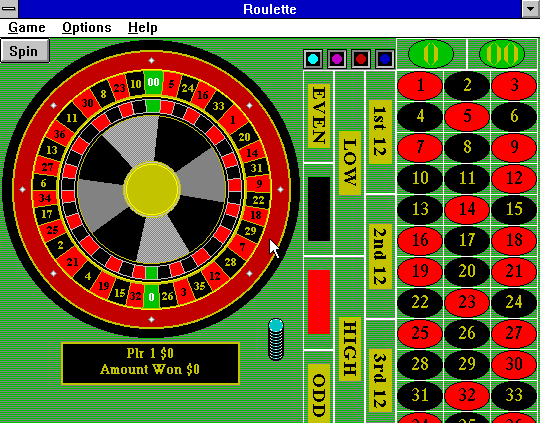
-

Microsoft: Windows 10 will keep you safe, and this is how
Publié: février 5, 2016, 9:32pm CET par Wayne Williams
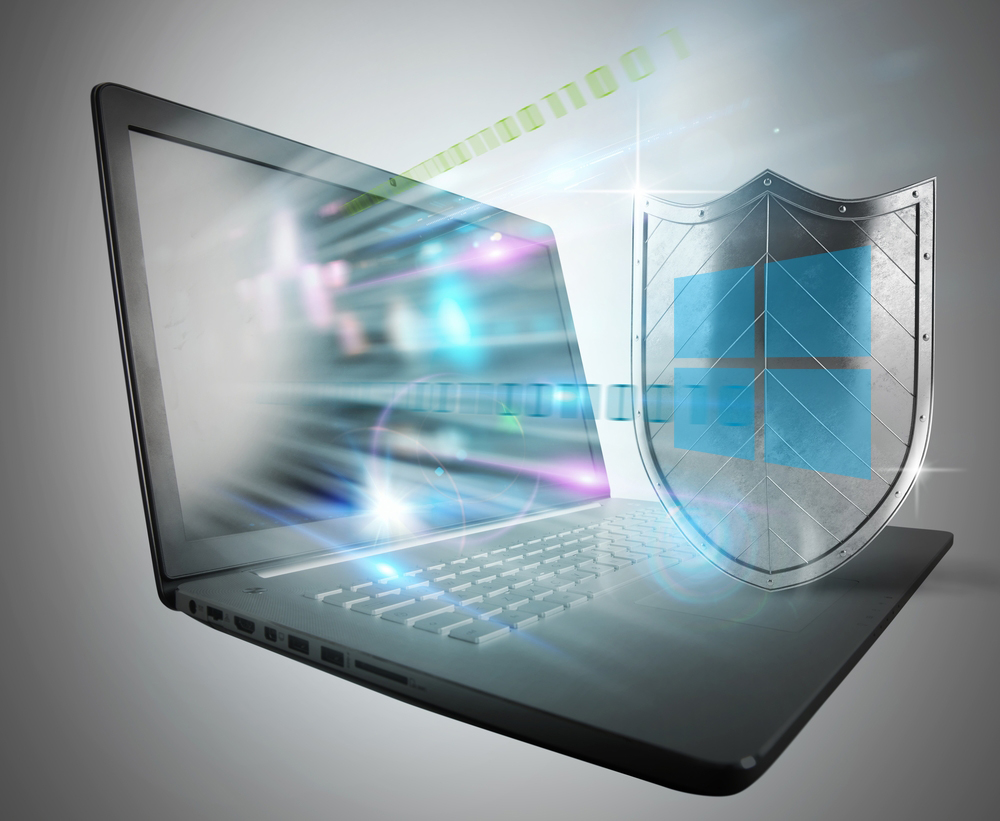
The reason Microsoft has given for pushing Windows 10 so aggressively is it wants to get users to a "safe place". Very altruistic. Although there’s no excuse for forcing users to upgrade in the manner that it has.
Still, there’s no questioning that Windows 10 is Microsoft’s safest operating system to date and to help sell the security benefits, the software giant has put together a web page detailing how the OS can protect you from modern security threats.
There are headings on Secure Devices, Identity Protection, Information Protection and Threat Resistance, and links to information relating to solutions such as Device Integrity, Cryptographic Processing, Microsoft Passport, Windows Hello, and SmartScreen.
Microsoft is clearly targeting businesses in its introduction:
Addressing today’s threats requires a new approach. Windows 10 offers architectural changes that protect from the inside out and go well beyond perimeter defense and building bigger walls.
If you look back at how security threats have evolved over time, you’ll find some disturbing trends. Enterprises that are used to attacks from individuals and small groups that were out for mischief or personal notoriety have been replaced by well-funded criminal organizations seeking profit. More recently these criminal organizations have been joined by highly clandestine organizations with ulterior motives and whose attacks appear to succeed at will.
The harsh reality is that the attackers have acquired the advantage, and if your organization is in the crosshairs, it’s not a question of whether the attackers can get access to your network, it’s a question of how fast they can do it and how long will it take you to find out. It often takes months to detect and almost as long to remediate.
So what exactly has Microsoft done to keep users safe? According to the software giant:
In Windows 10, we have made significant architectural changes to the platform, many of which address tactics used in the attacks that you have been reading about or have personally experienced. These changes are not just defensive measures that present steeper walls for attackers to climb; they are improvements that take critical tactics off the table, in some cases entirely. To achieve this goal, Windows 10 takes full advantage of state-of-the-art hardware technologies to help protect user identities, information, and devices against hacking and malware threats.
You can read about how Windows 10 protects users from security threats here. Do you trust Microsoft to keep you safe, or do you rely on other third-party tools?
Photo Credit: Shutterstock/alphaspirit
-

The $5 Raspberry Pi Zero back in stock shortly -- but you'll need to act fast
Publié: février 4, 2016, 4:33pm CET par Wayne Williams

The Raspberry Pi Zero might be tiny, but it’s been a huge hit for the Raspberry Pi Foundation. The $5 asking price has resulted in tremendous demand for the barebones microcomputer, resulting in near continuous sell-outs.
If you have yet to get your hands on one, there’s some good news. A fresh batch of Pi Zeros is set to be made available today, but you’ll need to act very quickly if you want to get your hands on one.
The Pi Hut announces it will start selling the Pi Zero today from 6PM UK time.
As you might expect, stock is still very limited though -- there’s a one device per person restriction in place -- and there’s a very good chance it will sell out again quickly, so don’t delay.
Although only The Pi Hut has announced availability so far it might be also worth checking other sellers, including element14 and Pimoroni in the UK (where it’s priced at £4.20), and Adafruit and Micro Center in the US.
-

Here's how to unlock (and play) Facebook Messenger's secret game
Publié: février 4, 2016, 2:37pm CET par Wayne Williams

Although there are lots of apps and services you can use for chatting to friends, Facebook Messenger is one of the better options because you can pretty much guarantee most people you know will have a Facebook account.
In addition to chatting with your friends you can now challenge them to play a game of chess, but only if you know the secret phrase to launch it, and the hotkeys used to pay the game.
To start a new game just type @fbchess play during a conversation. A board will appear. Your opponent will go first.
Select a piece using following:
K for king
Q for queen
B for bishop
N for knight
R for rook
P for pawn

And enter the corresponding letters and numbers to move it on the board. So, for example, to move a pawn you might type @fbchess Pd3
You can get further advice and tips by typing @fbchess help.
Photo Credit: Shumilina Maria/Shutterstock
-

Windows 10 Insider Preview Redstone Build 14257 arrives on the Fast ring
Publié: février 4, 2016, 9:11am CET par Wayne Williams

Last year Fast ring preview builds of Windows 10 arrived at a pretty sedate pace. This year they are coming thick and fast with a new build announced on a weekly basis.
The speed that new builds arrive does mean the differences between versions aren’t huge, but it’s all about preparing the ground work for future additions, like extensions.
Announcing the new Build 14257, Windows Insider chief Gabe Aul says:
Teams are still early in their new feature work and changes in this build are mostly about laying the foundation for those features to start coming into builds. So you won’t see many visible changes quite yet. Also, the increased pace of the Fast ring (You’ll note that this build is only 6 revs newer than the last build we sent to the Fast ring) means that there will be fewer big changes between builds as opposed to this time last year when builds were about 30 days apart. There is a ton of coding work going on, but I want to set your expectations on how it will show up for you at our increased Fast ring pace.
As a result, this release is all about shoring things up and Microsoft lists the following bug fixes included in this build:
- The issue of periodic app crashes or other memory related app errors due to a memory management change has been resolved. If you were having issues launching the Git client for Windows, you should now be able to launch it in this build.
- The Connect button now shows up again in Action Center.
- F12 Developer Tools will now load correctly Microsoft Edge.
- Fixed an issue where suggested apps were being shown on the Start menu even though "Occasionally show suggestions in Start" was turned off under Settings > Personalization > Start.
- Fixed an issue where if you try to change the Lock screen picture with "Get fun facts, tips, tricks and more on your lock screen" turned on it will revert back to the default.
- Fixed an issue where the positions of desktop icons get jumbled up after switching DPI settings from 100% to 150% or 175%.
- Also fixed an issue where pasting files into a new .zip file (compressed folder) in File Explorer by either right-clicking or Control-V would not work. You should be able to paste tiles into new .zip files just fine now.
Naturally, with this being a Fast ring release, there are various known issues to look out for.
- If you choose "Reset This PC" under Settings > Update & Security > Recovery -- your PC will be in an unusable state. There is no workaround if your PC gets into this state and you will need to reinstall Windows. This issue will be fixed in the next build. You can still rollback to the previous build if for some reason this build doesn’t work out for you. This bug also existed in Build 14251 so please avoid resetting your PC on these builds.
- You might see a WSClient.dll error dialog after logging in. We’re working on a fix for this but as a workaround, you can run the following in Command Prompt with administrative rights: schtasks /delete /TN “\Microsoft\Windows\WS\WSRefreshBannedAppsListTask” /F. This issue will be fixed in the next build.
- The front-facing camera is unusable on PCs with Intel RealSense resulting in being unable to use Windows Hello or any other apps that utilize the front-facing camera.
- After logging in to your PC, you may hit a UI issue in which Airplane Mode will incorrectly show as "on" even though your PC’s Wi-Fi is powered on. This is due to a timing issue between how the UI communicates and waits for the underlying platform to respond. The UI for Airplane Mode essentially does not wait long enough for the device’s physical radios to power on before reporting the current state. You can toggle the Airplane Mode on and off to get Airplane Mode back to showing the correct state.
Photo credit: charnsitr / Shutterstock
-

Extensions are coming to Microsoft Edge via the Windows Store, and Insiders will be able to try them 'soon'
Publié: février 3, 2016, 9:17pm CET par Wayne Williams
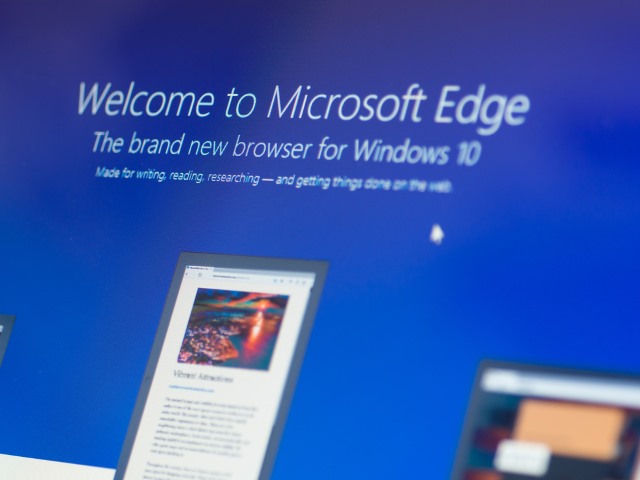
The kindest thing that can be said about Microsoft Edge is Windows 10's new browser has potential. It’s far from awful, it’s just rather unfinished. There’s little there to tempt users of Firefox or Chrome into switching.
Microsoft is working to change that though, and make the browser more appealing. Today it reveals a little more about its future plans, including how it will be handling extensions. It doesn’t announce exactly when the browser will receive this much-requested feature, but it does touch on how add-ons will be made available, and how you’ll be able to try out some early examples for yourself.
SEE ALSO: Stop using Microsoft Edge's InPrivate mode if you value your privacy
Kyle Pflug, Program Manager at Microsoft and editor of the Microsoft Edge Dev Blog, admits that extensions are a priority for the software giant and it’s working to ensure that they are implemented correctly. In a new blog post he says:
Last year, we announced our intent to deliver a new extension platform for Microsoft Edge to replace the often unreliable and insecure native add-ons of the past. Extensions are among the most requested features for Microsoft Edge and we’re building an extension platform powered by web technologies and familiar to developers. Any browser extensibility is a potential vector for malicious software, and our extensions will be vetted, delivered, and managed through the Windows Store.
Our implementation is underway and we look forward to sharing early examples soon via the Windows Insider Program. We will share more information on developing and publishing your own extensions at a later date…
So if you want to be among the first to see how well (or otherwise) extensions are implemented in Microsoft's new browser you’ll need to sign up to the Windows Insider Preview program, and wait for the relevant future build.
Will extensions be enough to tempt you into using Edge in place of another browser?
Photo credit: T.Dallas / Shutterstock
-

How to uninstall the Windows 10 'Recommended' update and go back to Windows 7 or 8.1
Publié: février 3, 2016, 4:41pm CET par Wayne Williams

Now that Microsoft is forcibly downloading Windows 10 onto unsuspecting Windows 7 and 8.1 users’ PCs there’s going to be a lot of unhappy customers faced with a new OS they never asked for nor wanted.
You can prevent this from happening by making sure the "Recommended Update" setting is unchecked on your PC, but if you fail to do this and accidentally allow the installation to go ahead (or maybe you tried Windows 10 and didn’t like it), the good news is it’s easy to roll things back to your original operating system.
Once the installation has completed you have 30 days to change your mind and go back to Windows 7 or 8.1.
All you need to do is click Start and launch Settings. Go to Update and Security and click Recovery on the left. You’ll see the option to Go back to Windows 7 or Go back to Windows 8.1 (depending on which version of Windows you had before). Click on Get Started and follow the instructions.
Windows 10 is actually a decent operating system, so if you have actually installed it, I’d recommend at least giving it a good go before rejecting it out of hand. You do have a month in which make up your mind, and you can roll the OS back at any point within that time frame.
Image Credit: Richard M Lee / Shutterstock
-

How to block the Windows 10 'recommended' update on Windows 7 and 8.1
Publié: février 2, 2016, 6:01pm CET par Wayne Williams
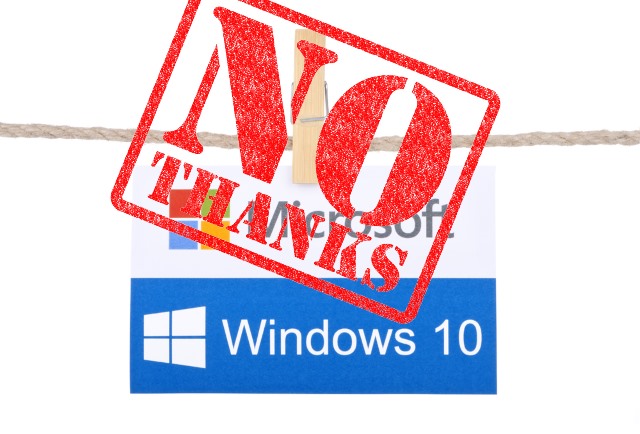
Microsoft has changed the Windows 10 update from "Optional" to "Recommended". And by "Recommended" it means "You’re getting it whether you want it or not".
If your Windows 7 or 8.1 PC is set to install recommended updates automatically (because -- more fool you -- you just wanted it to be up to date and safe) then Microsoft will cheerfully download the new OS and start the installation process for you. Don’t want that to happen? Here’s how to stop it.
First things first. Microsoft won’t install Windows 10 on your PC while you sleep (though it will download it). That’s the good news. If the installation process starts you’ll be able to cancel it.
But let’s not allow that in the first place. To prevent Microsoft downloading and installing Windows 10 on your computer, you need to turn off the Recommended Updates setting in Windows Update and hide Windows 10 from the list of available recommended updates.
In Windows 7, go to Start > Control Panel > System and Security > Windows Update. Click the Change settings link on the left.
Look for the Recommended updates entry and make sure it’s unchecked. Click OK.
In Windows 8.1 you can either follow the same steps listed above, or you can go through the PC Settings app. Go to Settings > Update and recovery > Windows update and select Choose how updates get installed. Uncheck the Recommended Updates box and click Apply.
Windows 10 will still appear as an available update, but it won’t be automatically installed now.
Finally, right-click on the Windows 10 update, and select Hide Update to make sure you don't install it by mistake.
Photo credit: chrisdorney and tanuha2001 / Shutterstock
-

Microsoft forcing Windows 10 onto people is wrong
Publié: février 2, 2016, 4:58pm CET par Wayne Williams

Microsoft says it wants to get people to a "safer place" and that’s why it’s so aggressively pushing Windows 10. But it’s one thing to advertise the new OS on someone’s computer, and another thing entirely to force them to upgrade to it.
Microsoft Marketing Chief Chris Capossela, says a lot of people are putting off upgrading to Windows 10 ("constantly kick[ing] the can down the street" in his words), and so the software giant is taking steps to give them a "push" into taking action. But not with a gentle reminder, or even full on nagging, but by downloading and then starting the OS installation without permission, and that sucks.
Yesterday, Microsoft changed Windows 10 from being an optional update for Windows 7 and 8.1, to a recommended update. If a PC is set to install recommended updates automatically then Windows 10 will be downloaded and the installation could then start once the download is complete.
People allow Microsoft to install recommended updates because they trust the company to keep their PCs safe by installing bug and security fixes automatically. They don’t -- and rightly so -- expect the software giant to download a massive 3.5GB+ file in the background and then attempt to change the operating system they use -- the operating system they paid good money for -- into something entirely different.
Sure you can cancel the upgrade when it starts, but if a user is in the middle of an important task, and they see a popup announcing something is happening with their PC, there’s a good chance they’ll just click OK and then find themselves waiting for an installation they didn’t actually want to complete before they can go back to whatever it was they were doing, except in a different operating system.
If they do cancel the Windows 10 install it’s not going to go away forever -- and while you can roll back Windows 10 within 30 days once the installation is complete, that’s a lot of hassle for someone who never asked for the new OS in the first place.
A lot of people aren’t even aware of Windows 10. My in-laws for example use and love Windows 7. They’ve never heard of Windows 10, and when that operating system turns up -- uninvited -- on their PC they’re not going to have the first clue what’s happened. Will they be happy about Microsoft getting them to a "safer place"? No, they won’t. They probably won’t even take the time to learn the new OS either -- because they don't want it -- they’ll just use their iPads more.
SEE ALSO: How to block the Windows 10 'recommended' update on Windows 7 and 8.1
Forcing Windows 10 on to people like this is frankly despicable behavior. Just because Microsoft has made Windows 10 free doesn’t excuse it. This is not an incremental change -- like when Apple updates iOS -- the difference between Windows 7 and Windows 10 is huge, and not all of the changes are for the better. Enjoying using Media Center? Yeah, we've taken it away.
Imagine if other companies behaved like that? If Amazon decided to swap the book you chose and paid for, for another book without your say so. "It’s new, it’s free!" Yes, but it’s also not the book I wanted or bought.
Microsoft says it wants Windows 10 on a billion devices. Google and WhatsApp have both just announced they have 1 billion active users. But the difference with them, is it’s a billion users who actually wanted Gmail, or wanted WhatsApp in the first place.
When Microsoft next announces how wonderfully well Windows 10 is doing, and how many more million users have been added from yesterday onwards, it will be a meaningless number, a hollow achievement, and certainly nothing for the company to be proud about.
Photo credit: Sebastian Gauert / Shutterstock
-

Just how successful is Windows 10?
Publié: février 1, 2016, 3:30pm CET par Wayne Williams

As you’ll have seen earlier, according to figures from NetMarketShare, Windows 10 overtook Windows 8.1 in January, taking just six months to do so. StatCounter, which also measures operating system usage, shows Windows 10 achieving the same feat in that month, although its figures are slightly different.
To mark this achievement it seems only right to compare Windows 10’s growth with that of past Windows releases to see how the new OS is really doing.
StatCounter found that in January, Windows 10’s global desktop usage hit 13.7 percent, compared to 11.7 percent for Windows 8.1 (NetMarketShare has the figures as 11.85 percent and 10.40 percent, respectively).
Breaking that down by territory, StatCounter has Windows 10 on 15.7 percent in the US (Windows 8.1 has 11.19 percent), and a whopping 22.4 percent in the UK (where Windows 8.1 has 12.5 percent).
Globally, the new operating system’s rate of growth is significantly above that of Windows 8, which had just 5 percent share six calendar months after release, and compares very similarly to that of Windows 7 which was on 13.5 percent at the initial half year stage.
You can see a breakdown of the three operating systems in table form:
Windows 10 (Jan 2016) Windows 8 (April 2013) Windows 7 (April 2010) Worldwide 13.7% 5.0% 13.5% US 15.7% 5.8% 14.7% UK 22.4% 6.6% 15.2% Obviously, while Windows 10 is clearly faring better than both previous operating systems, it’s important to remember that not only is the new OS free for Windows 7 and 8.1 users, but upgrading to it has been made incredibly easy and only requires a few mouse clicks. It’s also being pushed far more aggressively than any previous Windows operating system.
You can draw your own conclusions from that, but clearly Microsoft’s tactics are working. The software giant has a stated aim of getting the new OS on one billion devices within 2-3 years, and it’s not unfeasible to see it hitting half a billion in its first full year.
Photo credit: Robert Kneschke / Shutterstock
-

Act now! You only have this weekend to save your free OneDrive storage before Microsoft takes it away for good
Publié: janvier 30, 2016, 9:48am CET par Wayne Williams

Free online storage space is something many of us really appreciate. Quotas are usually so generous that’s there’s rarely a need to spend money on a paid subscription.
However, Microsoft recently announced plans to cut back on the amount of free storage offered to OneDrive users. As a recap, the base storage will drop from 15GB to 5GB, the 15 GB camera roll storage bonus is being discontinued, Office 365 Home, Personal, or University users will no longer get unlimited storage, and some paid tiers are going away also.
After an outcry from disappointed OneDrive users, Microsoft backtracked and permitted users with 15GB of OneDrive space to keep their base storage quota and camera roll bonus, even after the changes roll out. There is a catch though.
This is an opt-in offer with a time limit and you need to act before the end of January 31 to secure your free storage. Delay, and it will be gone for good.
The good news is saving your space is incredibly easy. All you have to do is go here and click the "Keep your free storage" button. That’s it.
So what are you waiting for? Go do it now before you forget and it's too late.
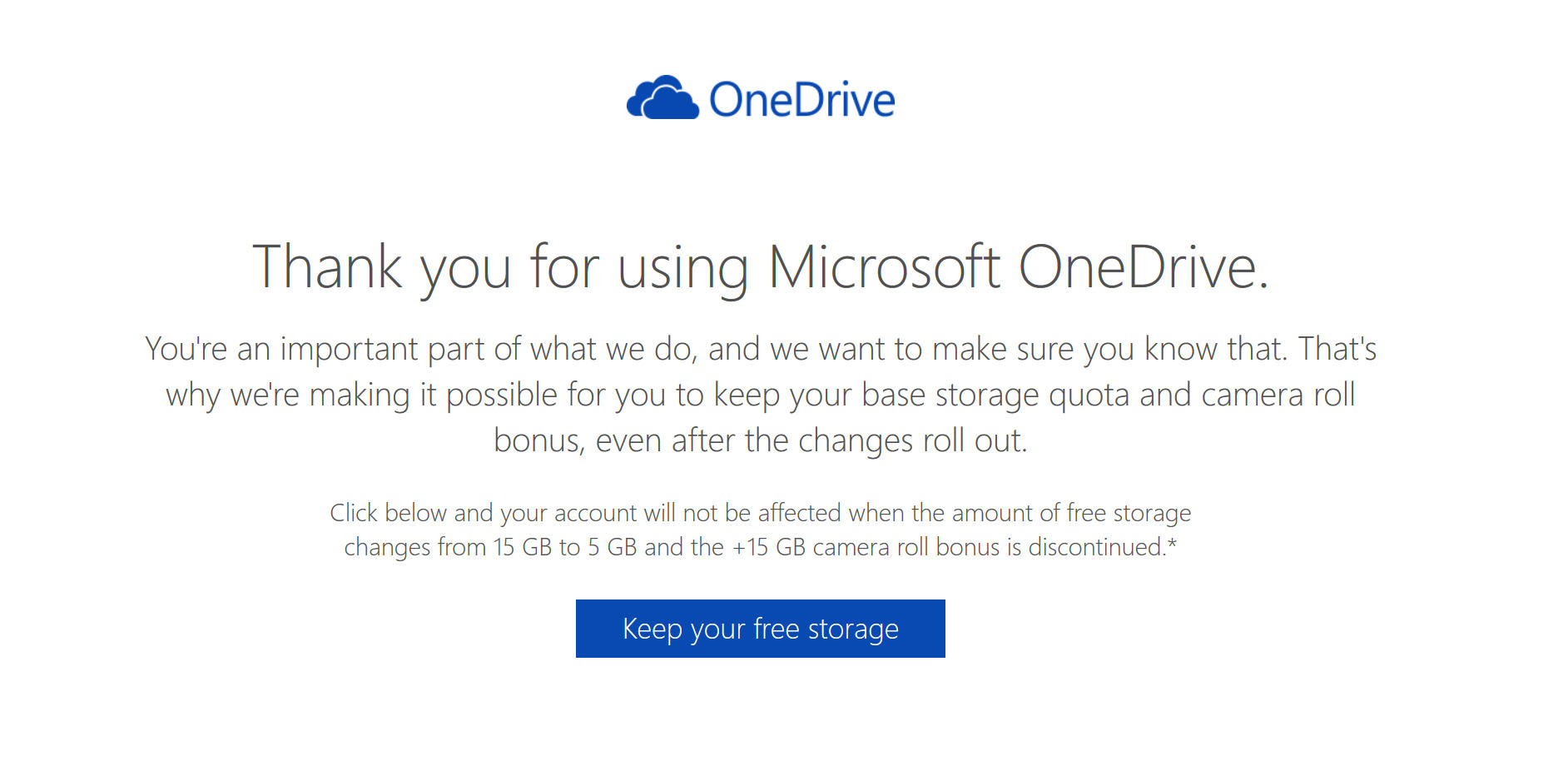
Photo credit: sarahdesign / Shutterstock
-

Now it's Apple's turn to recall a potentially dangerous power adapter
Publié: janvier 28, 2016, 4:33pm CET par Wayne Williams
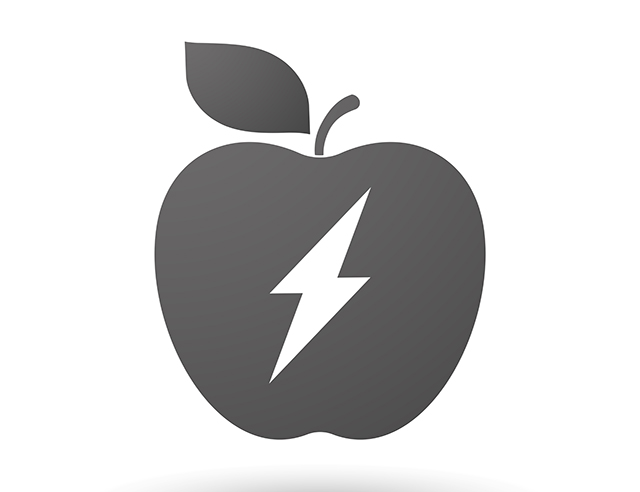
Last week Microsoft issued a voluntary recall for AC power cords for its Surface slates, after reports they could overheat and potentially catch fire.
Today, Apple follows suit, issuing a voluntary recall for certain AC wall plug adapters which could break and potentially "create a risk of electrical shock if touched".
These two-prong adapters are ones designed for use in Argentina, Australia, Brazil, Continental Europe, New Zealand and South Korea. This recall does not, Apple stresses, affect adapters designed for use in United States, United Kingdom, Canada, China, Hong Kong, or Japan, nor any Apple USB power adapters.
Affected adapters have either four or five characters or no characters on the inside slot where it attaches to the main Apple power adapter. You can identify an affected adapter by going here.
The page also explains how to exchange a potentially dangerous adapter, which be done either in store or by contacting Apple Support.
Photo credit: Blablo101 / Shutterstock
-

This is Bill. He is cluttering up Facebook. Be smart. Block Bill.
Publié: janvier 28, 2016, 12:30pm CET par Wayne Williams
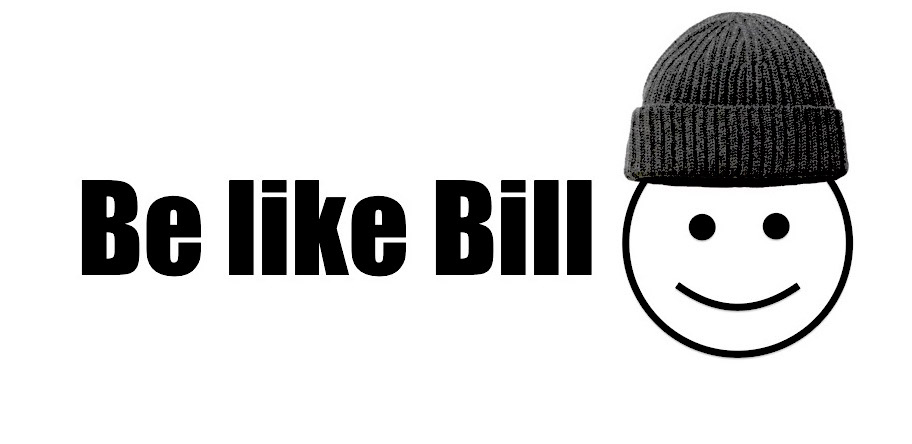
The first half dozen times I encountered the Bill meme on Facebook, I found it amusing. But after a while, the sanctimonious stick man -- who explains how people should use the web, among other things -- began to grate.
And then everyone started to make their own versions, using their own names. At that point, it was clear, enough was enough. If you feel the same, be like me, and block Bill, and all of the other variations by following these steps.
All you have to do is find one of the annoying posts. If your Facebook is anything like mine, it should be easy enough to locate one quite quickly.
Click the drop down arrow at the right side of the post, and then select 'Hide all from...', making sure you choose the app which is generating the 'Bill' posts, rather than blocking your friend. Although you can do that as well if you don’t like them.
If you still see some posts afterwards, block those as well, and soon the meme will disappear from your timeline.
It’s what Bill would do. And we all know he’s smart and we should all try to be like him.
-

Windows 10 Insider Preview Build 14251 arrives on the Fast ring
Publié: janvier 27, 2016, 7:35pm CET par Wayne Williams

For Windows Insiders, the Fast ring used to be something of a misnomer, with new Windows 10 preview builds trickling out on a rather infrequent basis. Microsoft promised to change that in the new year, and it’s already been as good as its word. Six days after the last new build, there’s already another available to install.
There’s a big jump in build numbers too. Last week’s release was Build 11102, and the new version is 14251. That might signify a major leap forward, with loads of changes and new features, but don’t get too excited.
Writing on the Windows Experience Blog, Windows Insider chief Gabe Aul explains:
Historically, the codebase for mobile had a different OS version than the codebase for PC because they were developed by different teams on different schedules. With Windows 10, we became one Windows team and brought these two codebases together. We started by changing the version string displayed in the UI to be consistent, which is why you saw similarly labeled builds over the past year for both Mobile and PC, but the underlying binary version numbers were still different. As part of our work getting the common codebase ready for the next release, we decided to complete that work and sync the build numbers between mobile and PC. Because the mobile codebase used higher build numbers than PC, we needed to jump ahead a bunch of build numbers to ensure updates to future builds will continue to work. So that’s why build numbers went from 11105, 11106, and 11107 to 14251.
So that’s the reason for the jump in build numbers, but what -- aside from the updated version string -- is new here?
Well, not a lot to get excited about is the honest answer. There are no notable new features in it, but there are some new Cortana improvements, and plenty of bug fixes, including:
- The issue where some PC games would crash switching from windowed mode to full screen, upon game resolution change, or upon launch due to a bug in Windows graphics stack.
- The issue where applications such as Narrator, Magnifier, and third-party assistive technologies may experience intermittent issues or crashes.
- An issue where File Explorer would crash frequently when DPI settings were at 175 percent.
As always, Fast ring insiders take a bit of a risk when updating to a new build and 14251 has the following known issues to be aware of:
- You might see a WSClient.dll error dialog after logging in. Microsoft is working on a fix for this but as a workaround, you can run the following in Command Prompt with administrative rights: schtasks /delete /TN "\Microsoft\Windows\WS\WSRefreshBannedAppsListTask" /F
- The Connect button does not show up in Action Center. The workaround is to press Windows key + P and then click "Connect to a wireless display".
- Due to a recent memory management change, you may see periodic app crashes or other memory related app errors. The workaround is to reboot your PC.
Photo credit: charnsitr / Shutterstock
-

Safari on iOS crashing for you? You're not alone, but here's a workaround [Updated]
Publié: janvier 27, 2016, 2:17pm CET par Wayne Williams

As an iPhone and iPad user, I spend a fair amount of time in Safari. Today, however, the browser has been crashing for me every time I carry out a search via the address bar.
I first thought it was a problem with my iPhone, but then I had the same problem with my iPad. It turns out to be a problem that's affecting a lot of users.
The exact cause of the issue isn’t known at the moment. Apple recently updated iOS to 9.2.1, but as I’m running both the current and older versions of the mobile operating system, and having the same problems on both, it’s clearly not that to blame.
If you’re affected by the problem -- and not everyone is according to reports -- there is a temporary workaround. Go to Settings > Safari and disable Search Engine Suggestions. Alternatively, you can activate the Private Mode in the browser.
Is this problem affecting you?
[Update] The problem, which is believed to be down to a bad process at Apple's data centers, appears to now be fixed. If you're still having the problem, go to preferences in Safari and click on "clear history and website data". That should solve it.
Image Credit: Johan Larson / Shutterstock
-

Not a fan of Microsoft Edge? Here's how to block the new browser in Windows 10
Publié: janvier 25, 2016, 2:34pm CET par Wayne Williams
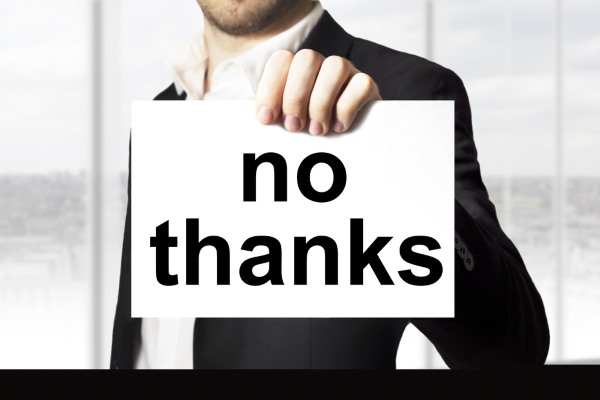
Microsoft Edge is deeply integrated in Windows 10, but while it’s a reasonable browser it still has a long way to go before it even comes close to rivaling the likes of Google Chrome or Firefox.
If you don’t use Edge, and I don’t, then its presence in Windows 10 might be a bit of an annoyance, especially when it sets (and occasionally resets) itself to not only be the default browser, but the default PDF reader too. Fortunately, you can block the browser, so you don’t need to ever worry about it again.
To do this you’ll need Edge Blocker, which is a simple tool that does what its name says and blocks Microsoft Edge. It couldn’t be easier to use, as there are just two buttons on the interface -- Block and Unblock.
SEE ALSO: How to change the default search engine in Microsoft Edge
Once you’ve blocked the browser, it won’t load even if you -- or an app -- tries to launch it.
Try it out, and assuming everything is working as it should, check and set the default apps for the tasks Edge usually does in Windows 10. You can do this through Settings > System > Default Apps.
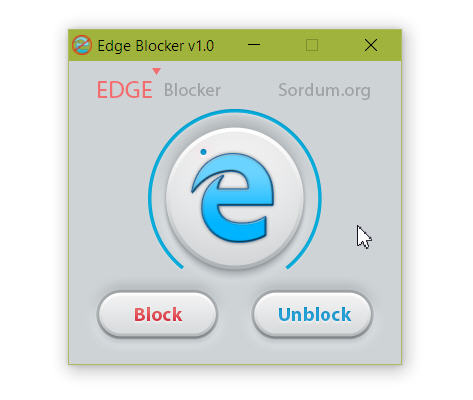
Photo credit: Imilian / Shutterstock
-

Microsoft debuts more powerful models of Surface Pro 4 and Surface Book… and a new gold pen too
Publié: janvier 22, 2016, 3:58pm CET par Wayne Williams
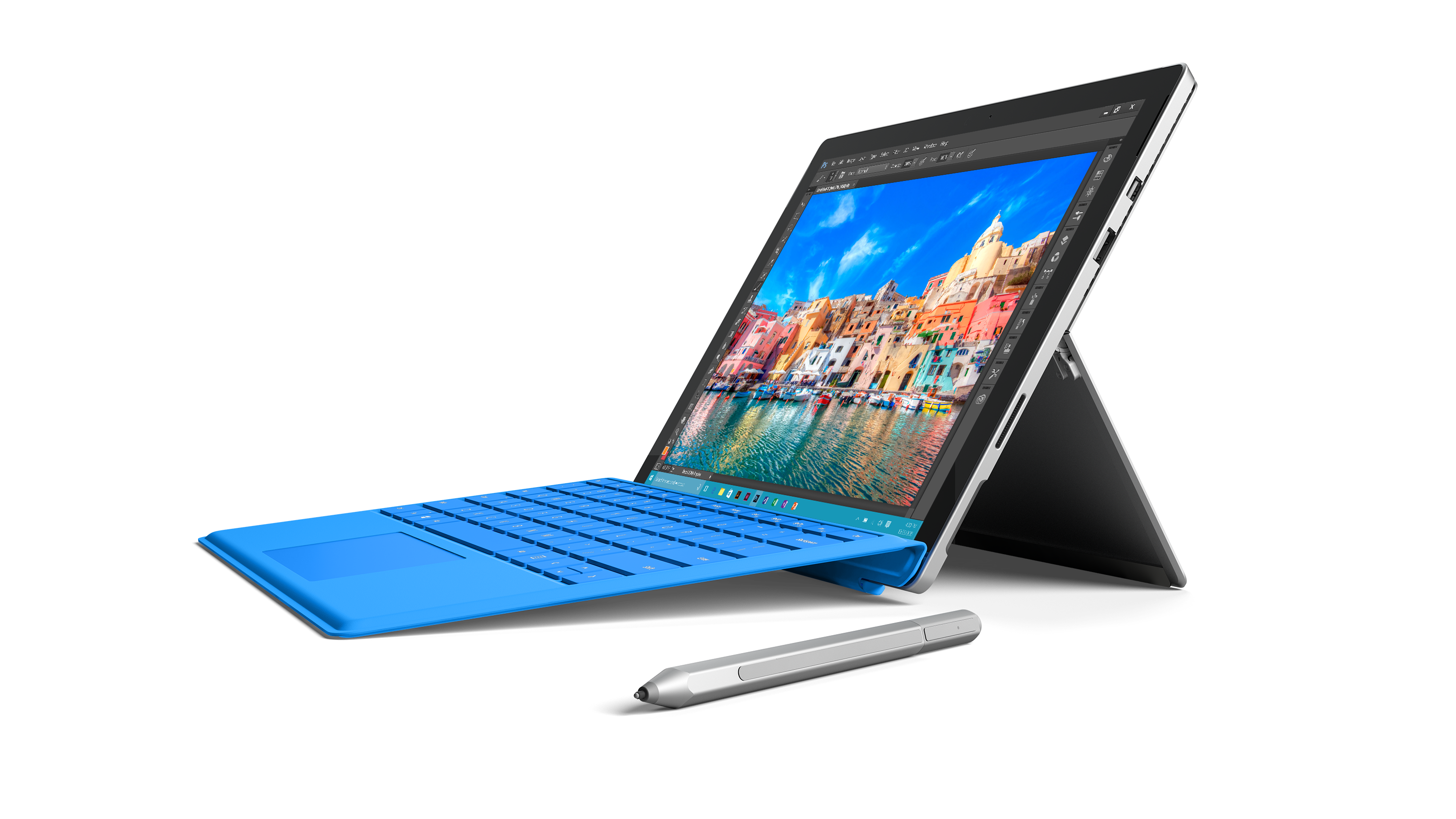
If you’re thinking of buying either Surface Pro 4 or Surface Book, there’s quite a few variations in the range to consider, with different capacities for different budgets.
Today Microsoft launches the most powerful versions yet of both devices, and also introduces a new Gold Surface Pen for people looking to make a "bold statement" (Microsoft’s words, not ours).
The latest variations of Surface Pro 4 and Surface Book are on sale in the US and Canada from today via Microsoft Stores and select retailers (online only) and both boast 1TB of storage with 6th Generation Intel Core i7 processors and 16GB of RAM.
The new Surface Pro 4 is priced at $2,699, while the Surface Book will set you back $3,199.

The new Gold Surface Pen offers 1024 levels of pressure sensitivity and comes with the Surface Pen Tip Kit so you can customize things further. It’s priced at $59.99 and is available to buy in the US, Canada, Denmark, Finland, Italy, Norway, Poland, Portugal, Spain, and Sweden. No doubt other territories will follow in due course.
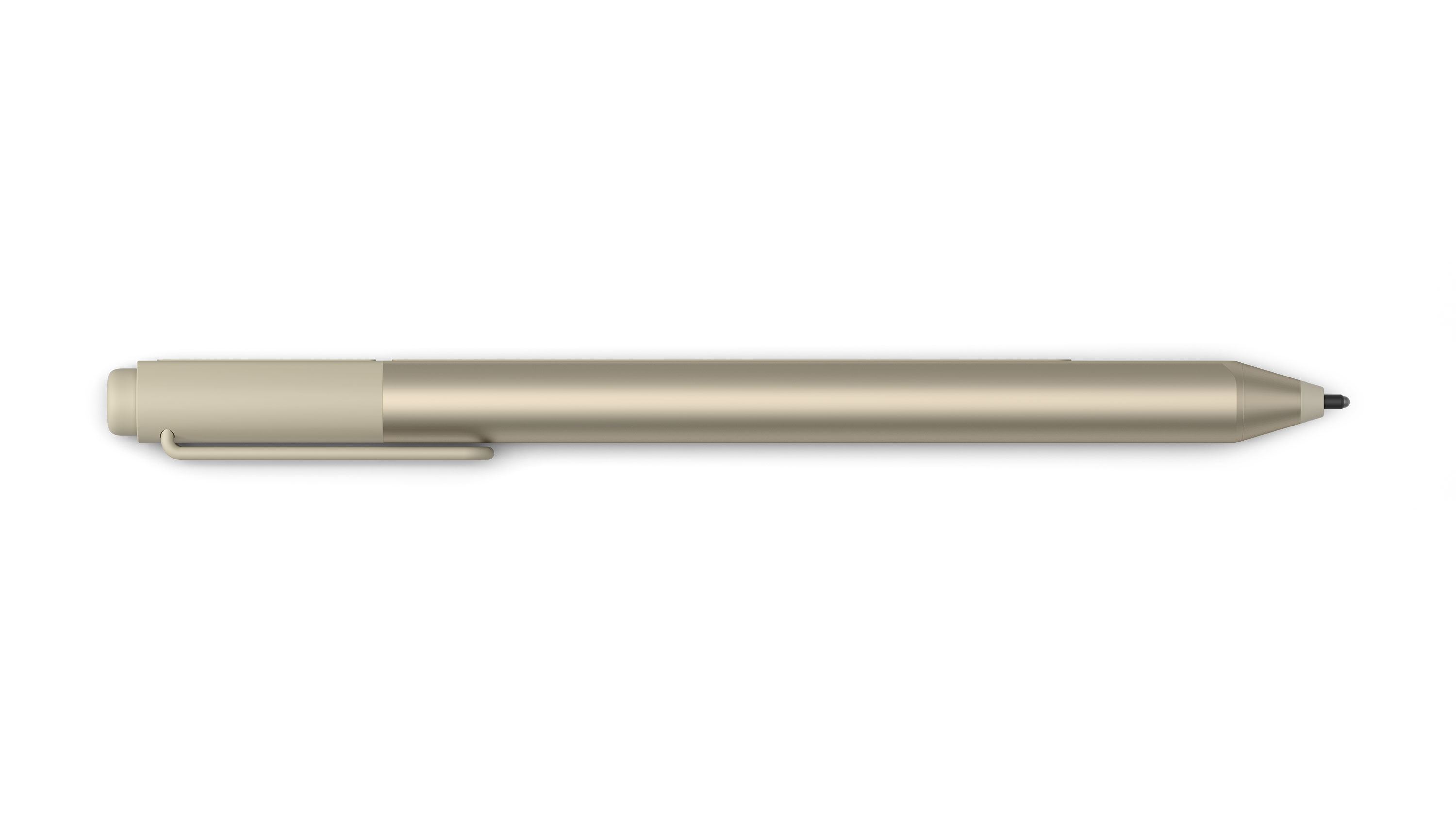
-

Windows 10 Insider Preview Build 11102 arrives on the Fast ring
Publié: janvier 21, 2016, 7:30pm CET par Wayne Williams

Microsoft promised late last year that it would be speeding up the rate that new Windows 10 preview builds arrived on the Fast ring in 2016, and (so far) it’s been as good as its word. A mere week after Build 11099 was pushed out to insiders, there’s a new build ready to install.
Build 11099 was rather unexciting for the most part, as it simply introduced structural improvements to OneCore, the core that Windows 10 shares across devices. Build 11102 is a little more interesting and introduces one welcome new feature for Microsoft Edge.
While Edge is a decent enough browser, it does lack certain features and polish. There’s still no sign of add-on support for it, for example. Build 11102 doesn’t right that particular wrong, but it does add a new history menu to the fledgling browser.
Right-clicking on the back and forward buttons in Microsoft Edge will now provide quick access to your recently visited websites in the current tab. Baby steps maybe, but it’s still a good inclusion and hopefully the first of many enhancements for Edge.
Because this is a Fast ring release there are plenty of known issues to be aware of. Ironically, one of the known issues concerns how known issues are communicated with Insiders. The plan was to make this information available via the Insider Hub, but a bug is currently preventing content from showing up in a timely manner, so Microsoft has gone back to including the list of known problems in its blog posts until the bug can be fixed.
Other known issues with the new build are as follows:
- Some PC games will crash switching from windowed mode to full screen, upon game resolution change, or upon launch due to a bug in Windows graphics stack. We have observed this with The Witcher 3, Fallout 4, Tomb Raider, Assassin’s Creed, and Metal Gear Solid V but it may occur with other titles as well.
- With this build (and with the last build), applications such as Narrator, Magnifier, and third-party assistive technologies may experience intermittent issues or crashes. If you rely on screen readers or other software, you should not use this build. This issue will be fixed with the next build.
- You might see a WSClient.dll error dialog after logging in. We’re working on a fix for this but as a workaround, you can run the following in Command Prompt with administrative rights: schtasks /delete /TN "\Microsoft\Windows\WS\WSRefreshBannedAppsListTask" /F
- While attempting to update to this build, your PC may show a message that your wireless card is not compatible with Windows 10. The workaround is to visit the support page for your PC or wireless card and install the newest driver that is available.
- The Connect button does not show up in Action Center.
Photo credit: charnsitr / Shutterstock
-

This is how to get a free replacement power cord for your Surface Pro
Publié: janvier 21, 2016, 4:37pm CET par Wayne Williams
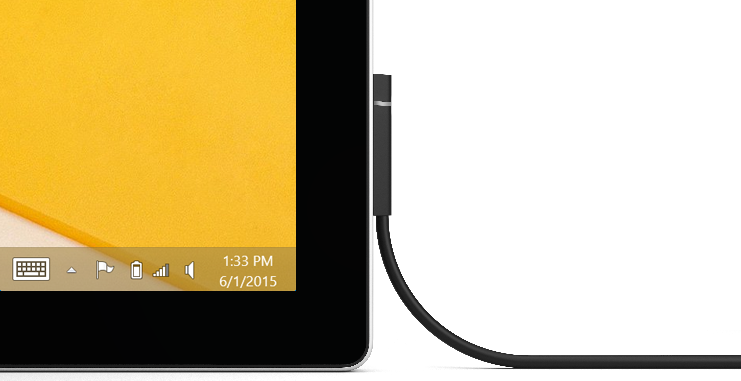
As you may already be aware, Microsoft has discovered that in certain situations the Surface Pro’s power cable could overheat, making it a potential fire hazard.
This is a problem that affects cables for the Surface Pro, Surface Pro 2, and Surface Pro 3 on devices purchased before March 15 2015 (in the US) or July 15 2015 (in all other territories). Microsoft has issued a voluntary recall, and you can now request a replacement power cord. The process is fairly simple, and this is what you need to do.
READ MORE: Microsoft to recall millions of Surface Pro power cords over potential fire risk
Provided you purchased a Surface Pro, Surface Pro 2 or Surface Pro 3 in the specified timeframe, go to www.surface.com/powercord and review the recall details. There’s a handy FAQ section there too.
Assuming you qualify for a replacement, sign in with your Microsoft account details and verify your information. This will be filled in automatically, and you can add or amend any details. Next select your product and place your request.
Replacement cords will arrive within 4-6 business days. Microsoft will send you an email containing the order status and tracking details.
The company also provides the following details for power cord care which it’s worth familiarizing yourself with:
- Avoid twisting or pinching your power cord.
- Don’t wrap your power cord too tightly, especially around the power brick. Instead, wrap it using loose coils rather than tight angles.
- Inspect your power cord regularly, especially where it joins the power brick.
- Avoid pulling on the power cord when unplugging your Surface. Gently removing the connector from the charging connector can help prevent your power cord from being damaged.
-

Would you pay up if you received an Ashley Madison blackmail letter like THIS?
Publié: janvier 21, 2016, 3:52pm CET par Wayne Williams

So many companies get hacked these days that it’s almost easy to be blasé about the news of another data breach. If your password gets compromised, you can change it. If your credit card details leak, you can cancel the card. But what happens when an extramarital affairs website you’re a member of gets hacked, and your personal details fall into the wrong hands?
When Ashley Madison was hacked last year, members had two straight choices -- come clean to their other half, or stay calm and hope it all blew over. Unfortunately, the fallout from the hack continues unabated, and some unfortunate Ashley Madison users have started to receive blackmail letters through the mail. And, for the recipients, the letters are truly terrifying.
A reader of Graham Cluley’s security website received one such letter and decided to share it with the world. His personal details, and those of another blackmailed user, have been redacted, but you can see the rest of the letter below.
In it, the blackmailer demands $2000 in bitcoin to keep quiet, and gives the recipient 10 days to pay up or risk having their involvement in Ashley Madison shared not only with their spouse, but with pretty much everyone they know. As the blackmailer puts it:
You see, [REDACTED], if you don't comply with my demand I am not just going to humiliate you, I am going to humiliate those close to you as well.
Naturally, the correct response upon receiving a letter such as this would be to contact the police and US Postal Inspectors, but I wonder just how many people would do that?
If you were signed up to Ashley Madison and you received a letter like this, what would you do?
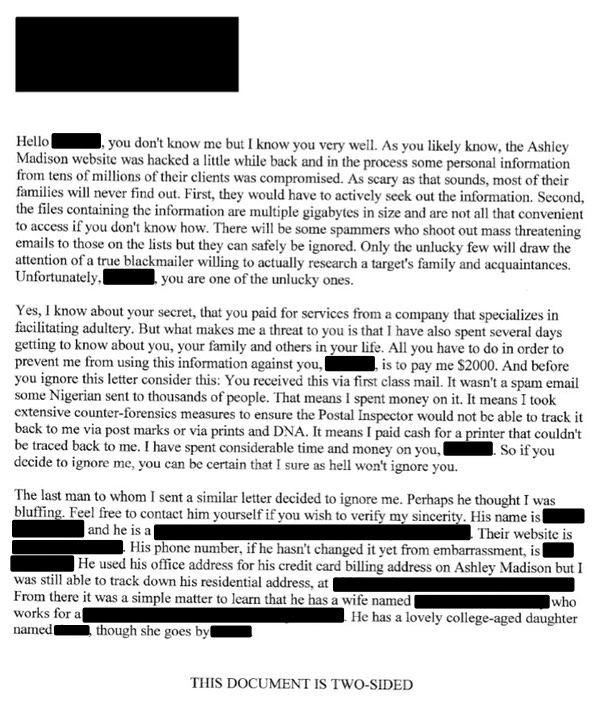
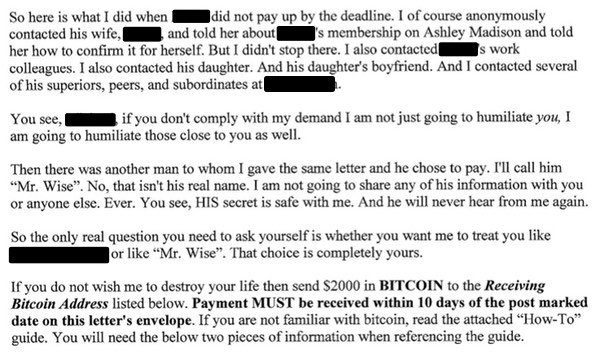
Photo Credit: www.BillionPhotos.com / Shutterstock.com
Letter credit: Graham Cluley
-

Don't open that Facebook email attachment -- it could be malware
Publié: janvier 21, 2016, 1:29pm CET par Wayne Williams
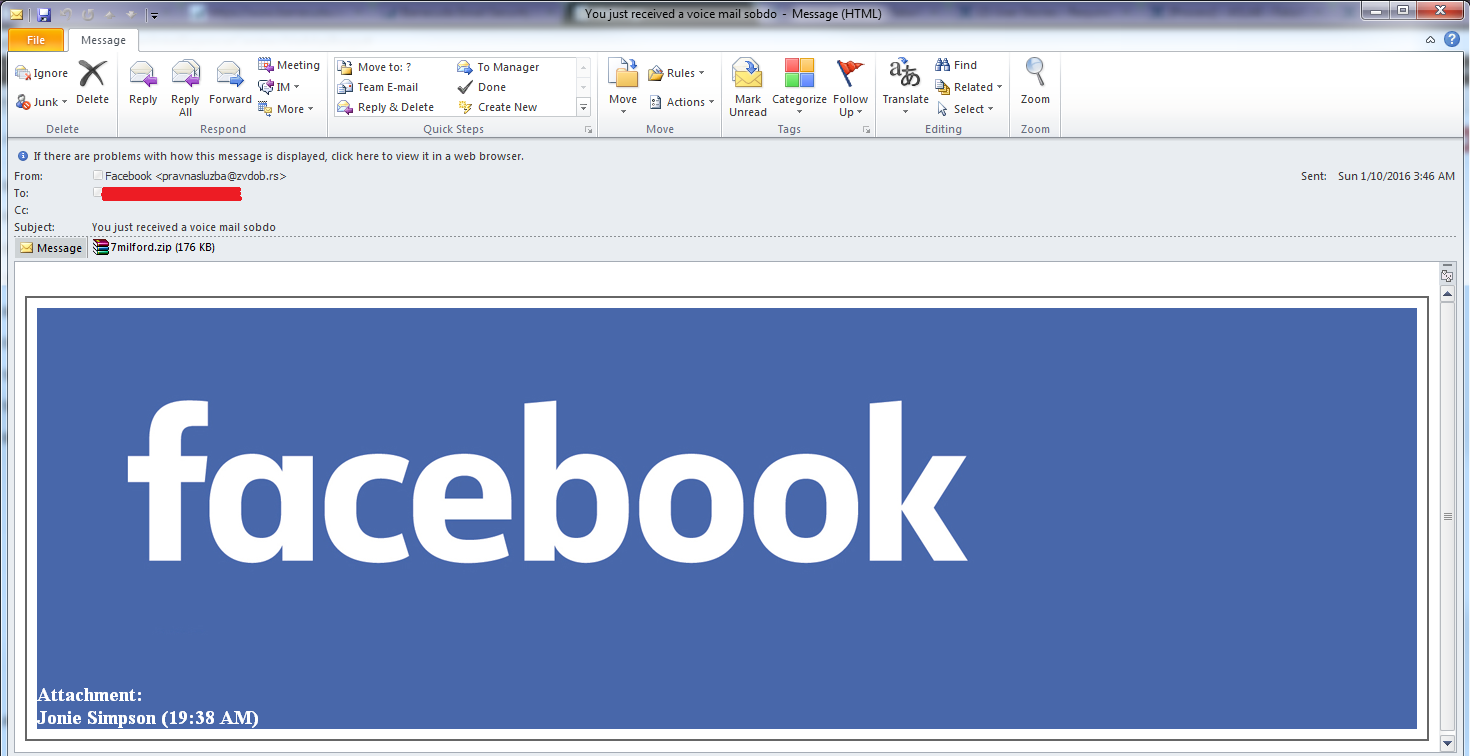
Two weeks ago, the Comodo Threat Research Lab discovered a malware campaign aimed at businesses and consumers using the WhatsApp mobile messaging service. That attack used official looking emails masquerading as WhatsApp content.
Now Comodo’s researchers have identified a similar phishing campaign targeting Facebook users, which it believes was created by the same group behind the WhatsApp malware.
The new Facebook campaign tries to represent itself as an email from Facebook which states there is a new message for the recipient.
The subject headings of the emails, which are similar to those used to spread the WhatsApp malware, include:
- A brief vocal e-mail was delivered. sele
- An audio announcement has been delivered! Lucqmc
- An audible warning has been missed. Yqr
- You got a vocal memo! Fcqw
- You recently missed a short audible notice. Rtn
- Ein Videohinweis wurde vermisst! squy (German for "a video note was missed")
Comodo says "Each subject line ends with a set of random characters like 'sele' or 'Yqr'. These are most likely being used to bypass antispam products rather than identify the user".
The malware is in a .zip file, sent as an attachment. Comodo has identified this as a variant of the "Nivdort" malware family.
Commenting on the findings, Fatih Orhan, Director of Technology for Comodo and the Comodo Threat Research Lab said:
In this age of cyberattacks, being exposed to phishing is a destiny for every company, well-known or not. It may not be the most groundbreaking attack method cybercriminals use -- but there’s no denying that they’re becoming more clever when crafting their messages. More frequently, they’re using 'too good to be true' promises and action-oriented language in the subject lines to entice recipients to open the emails, click the links or attachments and spread the malware. Users should be cautious of any email that requires information or that redirects to a URL Web page -- and especially if there is a file download.
-

IEEE: 2016 will be the year of the drone, but there's bad news for MP3 players, digital cameras, and wearables
Publié: janvier 21, 2016, 11:55am CET par Wayne Williams

43 percent of UK consumers expect drones to be the most influential technology in 2016, according to IEEE’s annual survey, with smart phones (38 percent) and 3D printing (31 percent) close behind.
The online survey, conducted in November 2015, questioned over two thousand adults to find out what technology they expected to see more/less of. While the list of devices predicted to fall from favor included obvious tech like digital music players, standalone digital cameras (both 15 percent), and ebook readers (9 percent), some 8 percent of respondents declared wearables had had their day.
Kevin Curran, IEEE Senior Member and Reader in Computer Science at University of Ulster states: "It is no coincidence that the three technologies predicted to become redundant result from the success of one -- the smartphone. It is the defacto way to listen to music and read ebooks; it’s taken over the digital camera market and many believe it will also bring about the demise of the tablet and PC. With sensors now being added to phones, the future for wearables and scanners could be questionable too. Strangely, one of the smartphone uses which is declining is making phone calls".
When asked which technologies respondents would like to see more of this year, home automation (20 percent), electric cars (19 percent) and 3D printing (17 percent) topped the bill.
Image Credit: Intel
-

Microsoft to recall millions of Surface Pro power cords over potential fire risk
Publié: janvier 19, 2016, 7:40pm CET par Wayne Williams

Despite getting off to a very shaky start, Microsoft’s Surface Pro is now a firmly established product that can genuinely replace not only your iPad, but your laptop too. However, there’s potentially bad news for anyone who purchased one of the company’s slates before 15 July 2015.
Microsoft has discovered that in certain situations the Surface Pro’s power cable could overheat, making it a potential fire hazard.
A Microsoft spokesman told us:
As a result of damage caused by AC power cords being wound too tightly, twisted or pinched over an extended period of time, a very small proportion of Surface Pro customers have reported issues with their AC power cord. We will be releasing details of how customers can obtain a free replacement cable shortly.
The problem relates to AC power supplies for the Surface Pro, Surface Pro 2, and Surface Pro 3. The Surface Pro 4, which launched last November, is reportedly not affected.
This is a worldwide voluntary recall, and owners will be able to get a free replacement by following the instructions which we will add below once Microsoft makes them public.
-

Don’t want Windows 10? Here's how to say no to the upgrade in Windows 7 and 8.1
Publié: janvier 18, 2016, 2:11pm CET par Wayne Williams
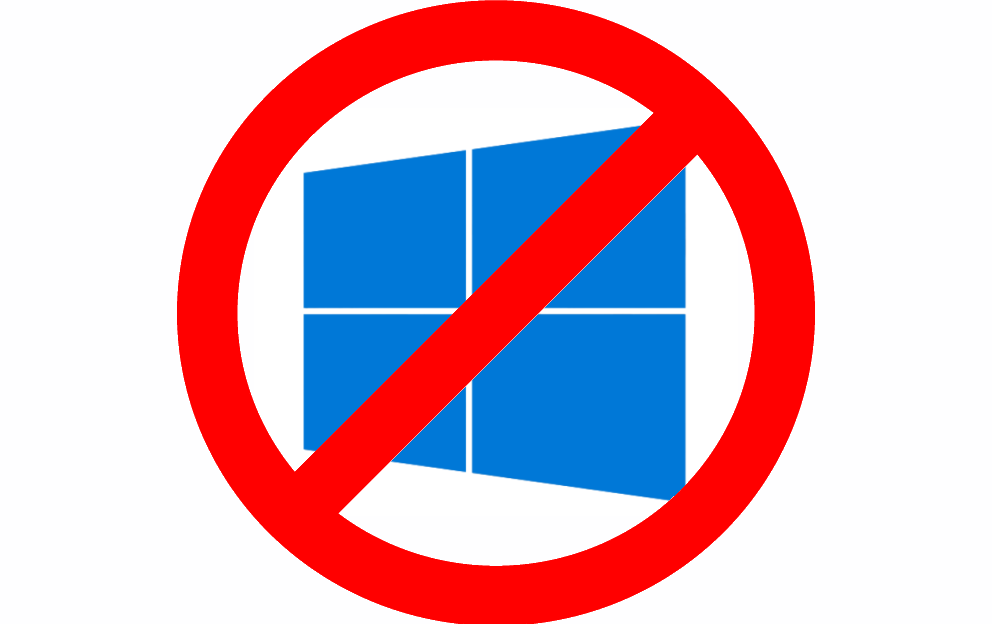
Fed up of Microsoft aggressively pushing Windows 10 on you? Happy to stick with Windows 7 or 8.1? You’re not alone.
Microsoft doesn’t make it easy to say no to Windows 10 (wouldn’t it be great if there was a "no thanks" button you could click to make the upgrade message and installation files simply go away?) but you can reject it using a Group Policy Setting or a registry tweak.
To block the Windows 10 upgrade using Group Policy (only available on Pro, Business and Enterprise editions) you may firstly need to download and install an update for your version of Windows.
- Windows 7 and Windows Server 2008 R2 users need KB3065987.
- Windows 8.1 and Windows Server 2012 R2 users need KB3065988.
Once installed, restart your PC and navigate to Computer Configuration > Policies > Administrative Templates > Windows Components > Windows Update.
Double-click on Turn off the upgrade to the latest version of Windows through Windows Update.
Click Enable to action the setting.
Alternatively, if you don’t have the Group Policy Editor you can use the Registry Editor to block the upgrade, although it may not be as effective.
Navigate to HKLM\SOFTWARE\Policies\Microsoft\Windows\WindowsUpdate. Right-click and select New > Dword (32-bit) Value. Call this DisableOSUpgrade and give it a value of 1.
Next go to HKEY_LOCAL_MACHINE\SOFTWARE\Policies\Microsoft\Windows\GWX. Create a new Dword (32-bit) Value and call it DisableGWX. Double-click it and set its value to 1.
Finally, another option you might want to consider is to install the GWX Control Panel which handles all of the hard work for you and does a great job of blocking the upgrade.
-

How to restore features Microsoft removed from Windows 10
Publié: janvier 18, 2016, 12:44pm CET par Wayne Williams
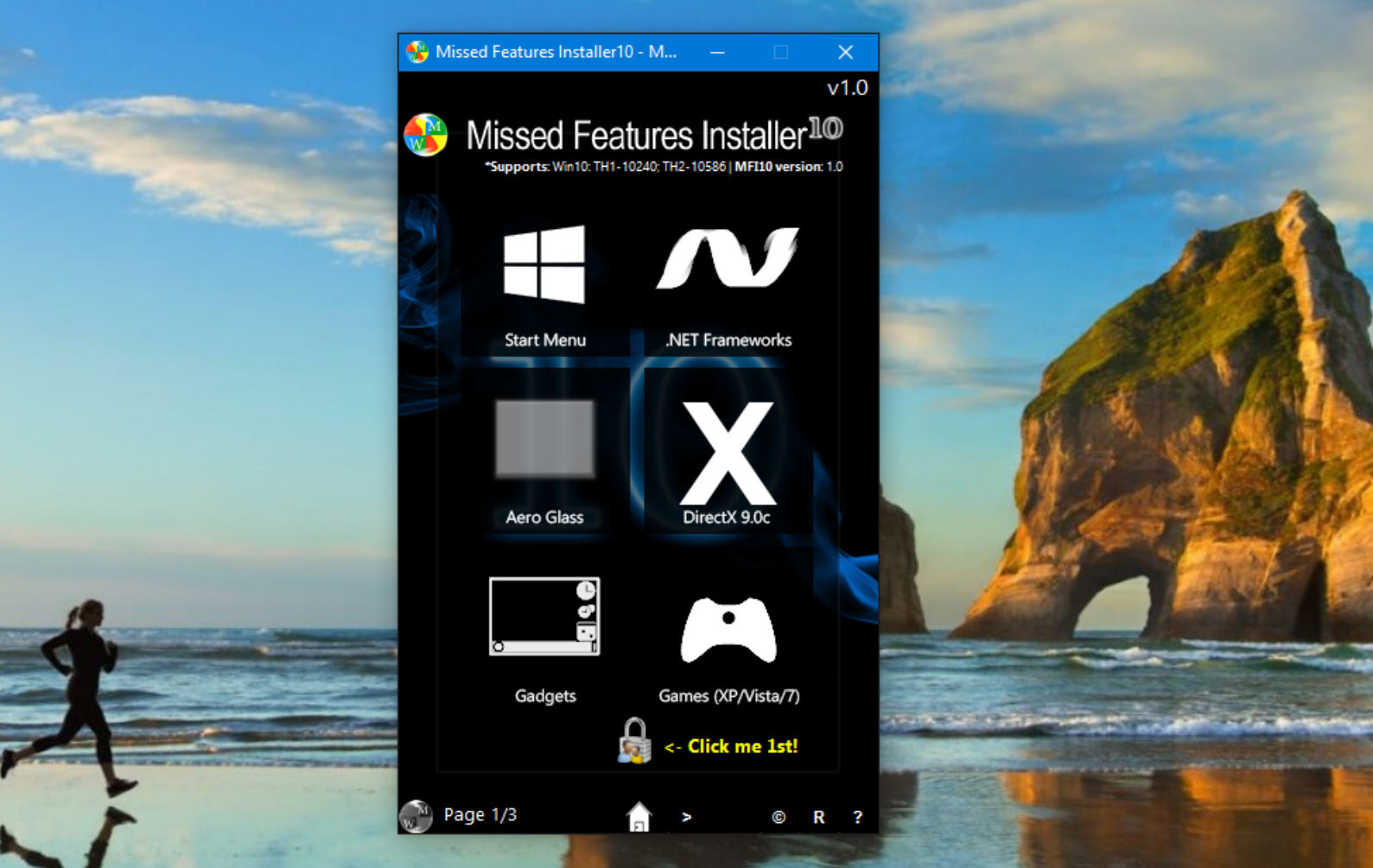
Windows 10 is a decent operating system, but Microsoft has seen fit to remove certain features found in previous iterations of the OS.
If you’ve upgraded to Windows 10 and have been disappointed to discover one or more of your favorite features have been removed, the good news is it should be possible to restore the missing functionality without too much effort.
What you need is the Missed Features Installer (MFI) for Windows 10. This is a 1.3GB ISO file which includes a ton of third-party programs, such as Classic Shell, Gadgets 2.0, This PC Tweaker, and the Windows Experience Index Tool. It also includes programs pulled from past versions of Windows.
To use it you need to mount, burn or open the ISO file, and launch the application on a PC running Windows 10. You can then choose which elements to install. The first screen of the menu includes options such as Start Menu, .Net Frameworks, Aero Glass, DirectX 9.0c, Gadgets, and Games (XP/Vista/7).
The menu displays a Click me 1st link and running this so will turn UAC off in order for Missed Features Installer to work properly.
On the next screen you can, among other things, install Windows Media Center and 'Destory' (sic) Win Spying. The third and final screen offers a selection of tools including Briefcase, Windows Movie Maker 6.0, and Windows Mail (from Windows 7), as well as some advanced settings.
Clicking any of the options will either present you with a choice of tools to install (in the case of the Start menu you can choose between Classic Shell and Start Menu Orbs), or simply begin the installation process.
You’ll probably want to create a backup of your system before you make any wholesale changes so you can revert to how things were in the event of problems. The software can’t do this for you.
-

Microsoft's Get Windows 10 app 'behaves like malware'
Publié: janvier 14, 2016, 1:00pm CET par Wayne Williams
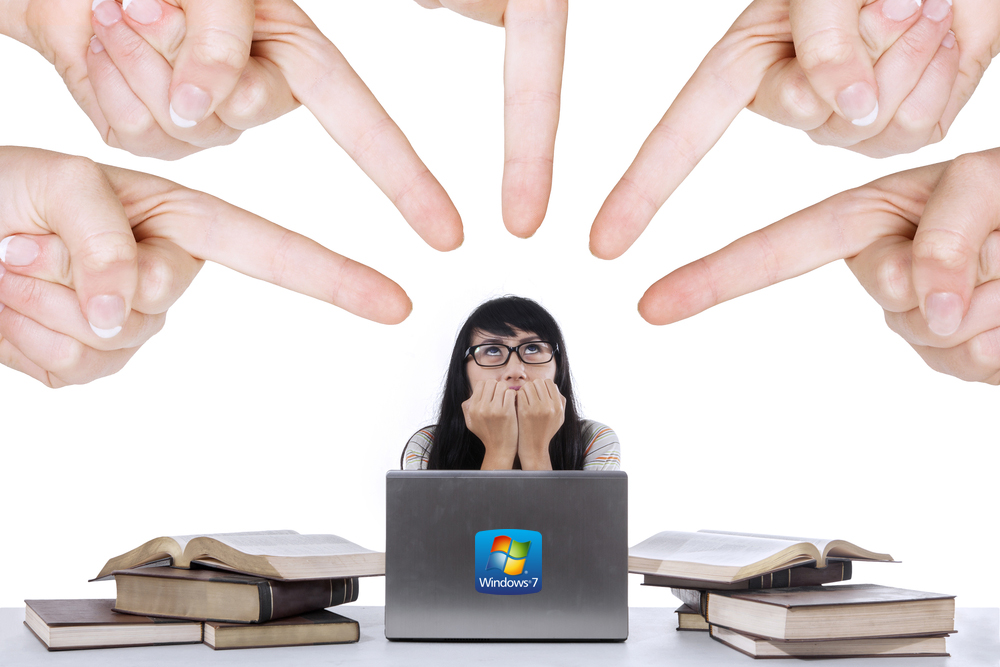
We all know that Microsoft wants as many people as possible to upgrade to Windows 10. The new OS is free for users of Windows 7 and 8.1, and the firm has the stated goal of getting it on a billion devices within 2-3 years.
To achieve this aim, Microsoft is pushing its new OS very aggressively, forcing it on to users, even if they have no desire to upgrade and have taken steps to actually prevent it.
In a recent Q&A, Microsoft marketing chief Chris Capossela made no apologies for his company’s approach which, he says, is being done to get users to a "safer place" and explained that there are some people out there who “kick the can down the street" and need a push to get the upgrade done.
READ MORE: Microsoft explains why it's pushing Windows 10 so aggressively (spoiler: it's to keep you safe)
That’s fine. But people who have made the decision not to upgrade -- who aren’t simply procrastinating but actually don’t want the new OS, at all -- should have that decision respected surely?
To get Windows 7/8.1 users to update, Microsoft installs Get Windows 10 (GWX) nagware on their PCs. Or the KB 3035583 patch as it’s known. This encourages users to update, and provides the means to do so. And personally I’m fine with it.
But what I’m not so keen on -- and I’m not alone here -- is it’s very, very hard to block. You can make changes to registry keys, but all you’re really doing is hiding GWX (removing its visibility from the system tray) but not stopping it running in the background.
Josh Mayfield, the creator of GWX Control Panel, a tool designed to block the Windows 10 upgrade, has created a video documenting how Get Windows 10 works on your PC, and its behavior is rather questionable.
Set an AllowOSUpgrade registry key to 0 -- either manually or via the Local Group Policy Editor control panel (gpedit.msc) -- and, in theory, this will prevent the upgrade from occurring, but on many PCs a running scheduled task (refreshgwxconfig-B) which is installed as part of the patch, resets the AllowOSUpgrade setting to 1 every time it runs. Change it back to 0, and it will be reset to 1 later that day.
As Martin Brinkmann at Ghacks says, "It appears as if Microsoft designed the Windows 10 upgrade mechanisms in a way that makes it very complicated for users to block the upgrade offer for good on machines running previous versions of Windows. This persistence is similar to how malware evolves constantly to avoid detection or come back after it has been removed from operating systems".
In a blog post he updated following the upload of the video, Mayfield backtracks slightly, saying:
In the video I discussed a couple of upgrade-related settings that get reset by various KB3035583 background tasks. While I haven't seen any background tasks change the DisableOSUpgrade setting, the registry value is not necessarily permanent, either. The problem is that Microsoft occasionally pushes update patches for Windows Update itself, and these patches sometimes wipe out existing Windows Update settings, including the DisableOSUpgrade value. (Here's an example of one such patch where I and several of my users observed this behavior.) These Windows Update client updates are kind of special, because Microsoft can push them to your computer automatically, even if you have your Windows Update settings configured to "Check for updates but let me choose whether to download and install them" or "Download updates but let me choose whether to install them". This is because they sometimes include necessary changes in order to communicate properly with Microsoft's update servers.
I don't believe this is a malicious or targeted change on Microsoft's part (it's essentially a re-install/clean slate for Windows Update sometimes), but the fact is that you can't expect your Windows 10-related registry changes to "stick" 100 percent of the time.
Even so, there’s other questionable behavior going on behind the scenes. Simply uninstalling the KB 3035583 patch likely won’t work because Microsoft has rolled out numerous versions of the patch, all with the same name. So if you remove one version, all that happens is you get rolled back to a previous one.
Although it’s hard to know exactly how many versions of KB 3035583 there have been (all modified in some small way before being pushed out), Woody Leonhard over at InfoWorld says by his reckoning there were at least nine rolled out in 2015. Does that not strike you as rather excessive?
READ MORE Microsoft continues to force Windows 10 on people who don’t want it
While it’s understandable that Microsoft doesn’t want users to reject the upgrade without properly considering it, this aggressive push and PUP-like behavior of its upgrade tool really isn’t doing the company any favors. Microsoft does provide a guide which explains how users can manage Windows 10 notification and upgrade options, but blocking the upgrade requires Group Policy and registry changes which are way beyond what the average Windows user will ever do. Microsoft put that program on people's computers, surely it should offer a much simpler way of removing it?
Yes, Microsoft wants to get users to a "safer place" but surely there must be better ways to do it than forcing people to upgrade. The software giant is crowing about Windows 10 being installed on 200 million devices (and rightly so), but then with Get Windows 10 it really is making users an offer they -- literally -- can't refuse.
Image Credit: Creativa Images / Shutterstock
-

Windows 10 Insider Preview Build 11099 arrives on the Fast ring
Publié: janvier 13, 2016, 7:35pm CET par Wayne Williams

It’s been a while since we’ve had any new Windows 10 preview builds, thanks to the holiday season, but Microsoft has at last pushed out a new build to the Fast ring. The software giant plans to make the Fast ring live up to its name this year with an accelerated release schedule.
In the future Microsoft’s criteria for releasing builds to the Fast ring will be much closer to its criteria for releasing them to its internal rings, which means new builds are likely to be buggier and suffer other issues. Build 11099, which is available for Insiders to download now, should be relatively stable however, as Microsoft has had a while to iron out any big problems.
The new build doesn’t contain any exciting new features. In fact it mostly makes structural improvements to OneCore, the core that Windows 10 shares across devices. This will, however, pave the way to greater changes down the line.
Explaining the improvements, Microsoft’s Gabe Aul says:
The code refactoring and other engineering work we’ve been doing to optimize OneCore is nearing the point where we will be ready for teams to begin checking in new features and improvements. It will still be a few builds before any really noticeable changes show up, depending on when teams begin lighting up new features in their areas. We’re excited for Insiders to use this build to validate the work we’ve been doing to OneCore, so give this build a try and let us know of any issues you run into via the Windows Feedback app.
This new build fixes a known issue from the last one with the progress dialog when copying or deleting files via File Explorer now showing up as expected.
As always, with Fast ring builds, there are other known issues to be aware of, and the details for those now appear in the Insider Hub. These are as follows:
- Log on for devices using Citrix XenDesktop may be broken. It is recommended that Insiders that use XenDesktop skip this flight by moving to the Slow ring.
- Applications that depend on Adobe Flash may crash upon launch. This will affect some version of Skype, QQ, WeChat, etc. This does not affect Microsoft Edge or Internet Explorer.
- With this build, defaults for some applications will be reset. Music & Video will default to Windows Media Player. This can be reconfigured opening Cortana or Search and searching for "Choose default apps by file type" to open the correct settings page.
Photo credit: charnsitr / Shutterstock
-

Oculus Rift pre-orders now open, ships March 28
Publié: janvier 6, 2016, 6:21pm CET par Wayne Williams
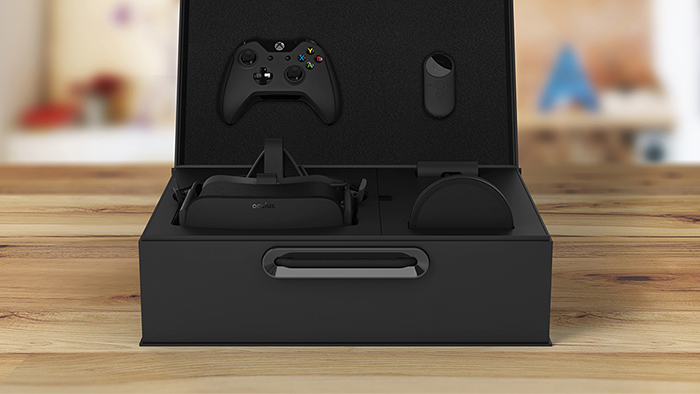
There’s no shortage of VR products available to buy, but the daddy of them all is unquestionably Oculus Rift. Unlike some rivals, this isn’t just a device you slap a smartphone in and strap to your face, it’s a full blown VR system with a sensor for tracking head position, and an input device that’s been built specially for navigating VR worlds.
The Rift has just gone up for pre-order now, and Oculus will start shipping it from March 28. It will be available in 20 countries, including the US, UK, Australia, Canada, France, Germany, and Japan. The full list of supported territories is here. It will also be available through select retailers from April.
In the box you’ll get the Rift headset with built-in headphones and mic, sensor for positional tracking, an Xbox One controller and the Oculus Remote.
Pre-orders come with Lucky’s Tale, a VR platformer developed by Playful, and access to EVE: Valkyrie through the Founder’s Pack. Rift will live or die on the titles which are available for it, but Oculus says dozens of full-length AAA games are lined up, including Minecraft, with more than 100 titles expected to be available by the end of the year.
To use the Rift you will need a compatible PC. Oculus shares the required specs:
- Graphics card: NVIDIA GTX 970 / AMD R9 290 equivalent or greater
- Processor: Intel i5-4590 equivalent or greater
- Memory: 8GB+ RAM
- Output: Compatible HDMI 1.3 video output
- Input: 3x USB 3.0 ports plus 1x USB 2.0 port
- Operating system: Windows 7 SP1 64 bit or newer
If you’re not sure if your system is up to the task, you can check using the Oculus compatibility tool. Oculus is also running a certification scheme and you’ll be able to buy Oculus Ready PCs.
At this point you’re probably screaming, "but how much is it?" The Rift is priced from $599 but may cost more depending on where you are in the world. The price doesn't includes taxes or shipping.
-

Microsoft says that Windows 10 is now on 200 million devices and is its fastest growing OS ever
Publié: janvier 4, 2016, 5:37pm CET par Wayne Williams

NetMarketShare’s latest desktop usage figures suggest that Windows 10 now has nearly 10 percent of the market. And that translates to over 200 million devices, according to the latest figures released today by Microsoft.
Yusuf Mehdi, Microsoft’s corporate vice president, Windows and Devices Group, says "there are more than 200 million monthly active devices around the world running Windows 10" and he reports some other interesting adoption figures about the new OS, which will surprise a lot of people.
According to Mehdi:
Windows 10 adoption is accelerating, with more than 40 percent of new Windows 10 devices becoming active since Black Friday.
In fact, Windows 10 continues to be on the fastest growth trajectory of any version of Windows -- ever -- outpacing Windows 7 by nearly 140 percent and Windows 8 by nearly 400 percent.
We’re seeing increased preference for Windows 10 with consumers. Since Black Friday, US retail PC share for Windows 10 grew 16 points to 62 percent compared to the prior four weeks. Windows 10 mix of PCs rose to 87 percent from 58 percent prior to the holiday.
We are also seeing accelerating and unprecedented demand for Windows 10 among enterprise and education customers. As of today, more than 76 percent of our enterprise customers are in active pilots of Windows 10, and we now have over 22 million devices running Windows 10 across enterprise and education customers.
These figures are interesting because they don’t match what NetMarketShare’s data shows -- which is a clear slowing of growth.
Every version of Windows ever released has, at some point in its history, been described as significantly outselling/shipping more than any other previous version. In 2012, Microsoft’s then-CEO Steve Ballmer said that about Windows 8, and we all know how well that panned out. Still, Windows 10 on 200 million devices does put it way ahead of Windows 7 which, according to information released by Microsoft, had sold 100 million copies in the first six months (making it the fastest selling Windows OS ever... at the time).
Microsoft has now released several sets of numbers for Windows 10. At the end of August it said the new OS was on 75 million devices. This rose to 110 million at the start of October and now, three months later, it’s on 200 million. That doesn’t really strike me as "accelerating", but either way, Windows 10 is clearly doing well.
Image Credit: Zurijeta / Shutterstock
-

Canonical goes on the attack, claims over a billion people use Ubuntu
Publié: janvier 4, 2016, 1:15pm CET par Wayne Williams

At the end of last year, Michael Larabel of Phoronix wrote an article in which he pointed out that Ubuntu had failed to hit its stated aim of 200 million users by the end of 2015. This figure was a goal that Canonical founder Mark Shuttleworth laid out at the Ubuntu Developer Summit (UDS) in May 2011.
"We're just days away from closing out 2015 and it doesn't look like Ubuntu has come close to reaching that goal", Larabel wrote. Clearly his article riled those at Canonical, and the company has come out swinging with a blog post that details exactly how popular, and ubiquitous, Ubuntu is.
The company can’t destroy Larabel’s article with actual user numbers, since Canonical doesn’t count them (the post points out that, "unlike Apple, Microsoft, Red Hat, or Google, [Canonical] does not require each user to register their installation of Ubuntu") but it does state that "hundreds of millions of PCs, servers, devices, virtual machines, and containers have booted Ubuntu to date".
The author, Dustin Kirkland, who is part of Canonical's Ubuntu Product and Strategy team, then goes on to list the many ways that people use Ubuntu, including that "at least 20 million unique instances of Ubuntu have launched in public clouds", and that movies on Netflix are served by the OS, and many of those movies will have been rendered on Ubuntu at WETA Digital. It’s a long, fascinating list.
He goes on to bet that there are over a billion people today using Ubuntu -- both directly and indirectly -- and even states that:
- More people use Ubuntu than we know.
- More people use Ubuntu than you know.
- More people use Ubuntu than they know.
- More people use Ubuntu than anyone actually knows.
Betting over a billion people use the OS, when there’s no way of backing up that claim, is a bit odd. It’s a number plucked out of the air which no one can ever prove or deny. Based on that methodology Microsoft could probably claim 7 billion people use Windows in one way or another.
Photo credit: wavebreakmedia / Shutterstock
-

Despite Microsoft's increasingly aggressive tactics, Windows 10's growth continues to slow
Publié: janvier 1, 2016, 10:57am CET par Wayne Williams

Microsoft is largely unrepentant about pushing its new operating system so aggressively, and early in the year it will be marking Windows 10 as a "recommended update" in a bid to get larger numbers of Windows 7 and 8.x users to make the switch.
Since its launch, Windows 10 has been gaining usage share at a steady, if rather unexciting rate, but there’s a clear downward trend that shows users of older operating systems are in no hurry to upgrade.
The latest desktop OS usage numbers from NetMarketShare show yet another dip in Windows 10’s fortunes. In December the new operating system gained 0.96 percentage points, going from 9 percent to 9.96 percent. With a normal operating system, grabbing 10 percent of the market in just five months would be viewed as a solid start, but this is a free operating system following the unpopular Windows 8, so you would expect growth to be much faster. For comparison, in the same time frame back in 2009, Windows 7 had claimed 12 percent of the market and it wasn’t free.
The slowing of growth for the new OS is quite clear. In September, Windows 10 grew by 1.42 percentage points, in October it grew by 1.31 and in November it increased its share by 1.06 percentage points. As we saw, in December the new OS grew by 0.96 percent. For an operating system that’s not only free but being pushed ever more forcefully onto users, that trend has to be a worry for Microsoft.
Most other versions of Windows lost share in December. Windows 8 went from 2.88 percent to 2.76 percent for a decline of 0.12 percentage points. Windows 8.1 went from 11.15 to 10.30 for a drop of 0.85. With both flavors combined, the tiled OS now stands on 13.06 percent, down 0.97 percentage points.
Windows 7 remains by far and away the most popular operating system with 55.68 percent of the market, dropping just 0.43 percentage points in the month.
That just leaves Windows XP which rallied a little at the end of the year for a minor 0.34 gain. It still has 10.93 percent of the market.
Will Windows 10’s growth continue to slow in 2016? We shall see starting next month.
Photo credit: BlueSkyImage / Shutterstock
-

My favorite tech items of 2015 [Wayne]
Publié: décembre 31, 2015, 6:48pm CET par Wayne Williams

I’m looking forward to next year when, hopefully, I’ll finally be able to get my hands on the Oculus Rift which is expected to start shipping to consumers in Q1 2016. Pre-orders were supposed to start this year, but that’s clearly not going to happen now. Still I’ve waited long enough to get my VR fix, what’s a few more weeks/months?
While I didn’t get a Rift to play with this year, plenty of new technology did make its way through my hands and into my life. Here are some of the standout pieces of tech I'd definitely recommend you check out.
Apple iPhone 6s
Having been using an iPhone 5s as my daily driver since 2013, it was clearly time for an upgrade. While I was certainly tempted by the likes of the Samsung Galaxy S6 and HTC’s One M9, there was only really ever going to be one phone for me. The iPhone 6s has proven to be a delight and while 3D Touch isn’t the killer feature it might one day be, and Live Photos are a bit of a waste of space (literally), I couldn’t be happier with my choice of mobile.
Apple Watch
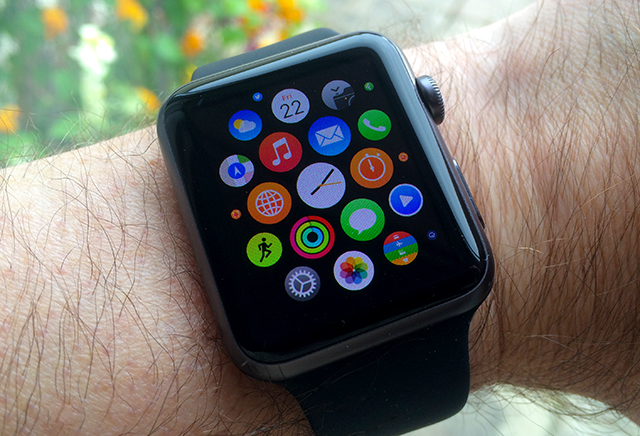
Despite declaring I didn’t want an Apple Watch I ended up buying a Sport model anyway. You can read my first impressions review of it here. I don’t wear it every day but I’ve found it to be both fun and useful. Apple Pay is great (when it works, which isn’t always immediately) and I’ve quickly come to appreciate the benefits the Watch has to offer. The WatchOS 2 update has certainly made the device much more useful.
SEE ALSO: Santa brought you an Apple Watch? Here’s what to do first
Windows 10
While I didn’t buy a new Windows 10 device this year, I did upgrade both my main PC and laptop to Microsoft’s new operating system. I’ll be honest and admit I’m not blown away by Windows 10 -- it just seems too unfinished for my tastes -- but I do like it and look forward to the day when it’s finally the operating system it promises to be (which will hopefully be at some point in 2016).
SEE ALSO: Santa brought you a Windows 10 PC or tablet? Here’s what to do first
Hisense Sero 8 Pro
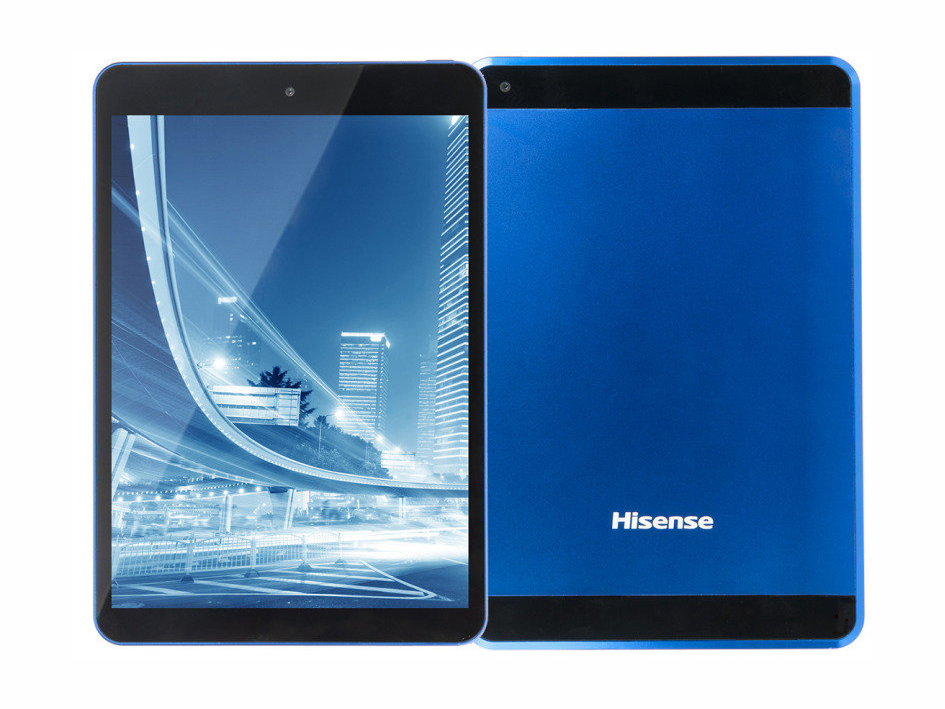
I reviewed the Hisense Sero 8 Pro tablet in November and found it to be a surprisingly good budget Android slate with a great quality screen. A lot of budget tablets turn out to be something of a disappointment, but that definitely isn’t the case with the Sero 8 Pro.
Amazon Fire TV Stick
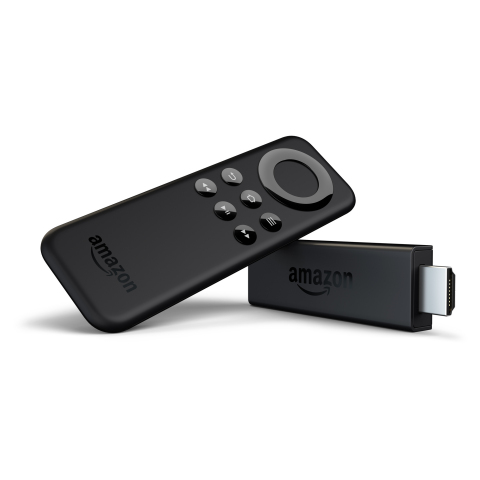
This year I finally succumbed to Amazon Prime and now I’m kicking myself for waiting so long. You get so much for your money -- free next day delivery, free streaming music, free TV shows and movies -- that I’d happily pay twice as much for the service when the renewal rolls around next year (but hopefully I won’t need to). To get the most out of Amazon Prime Video I purchased the Fire TV Stick, and it’s a fantastic little device that I'd wholeheartedly recommend.
PlayStation 4
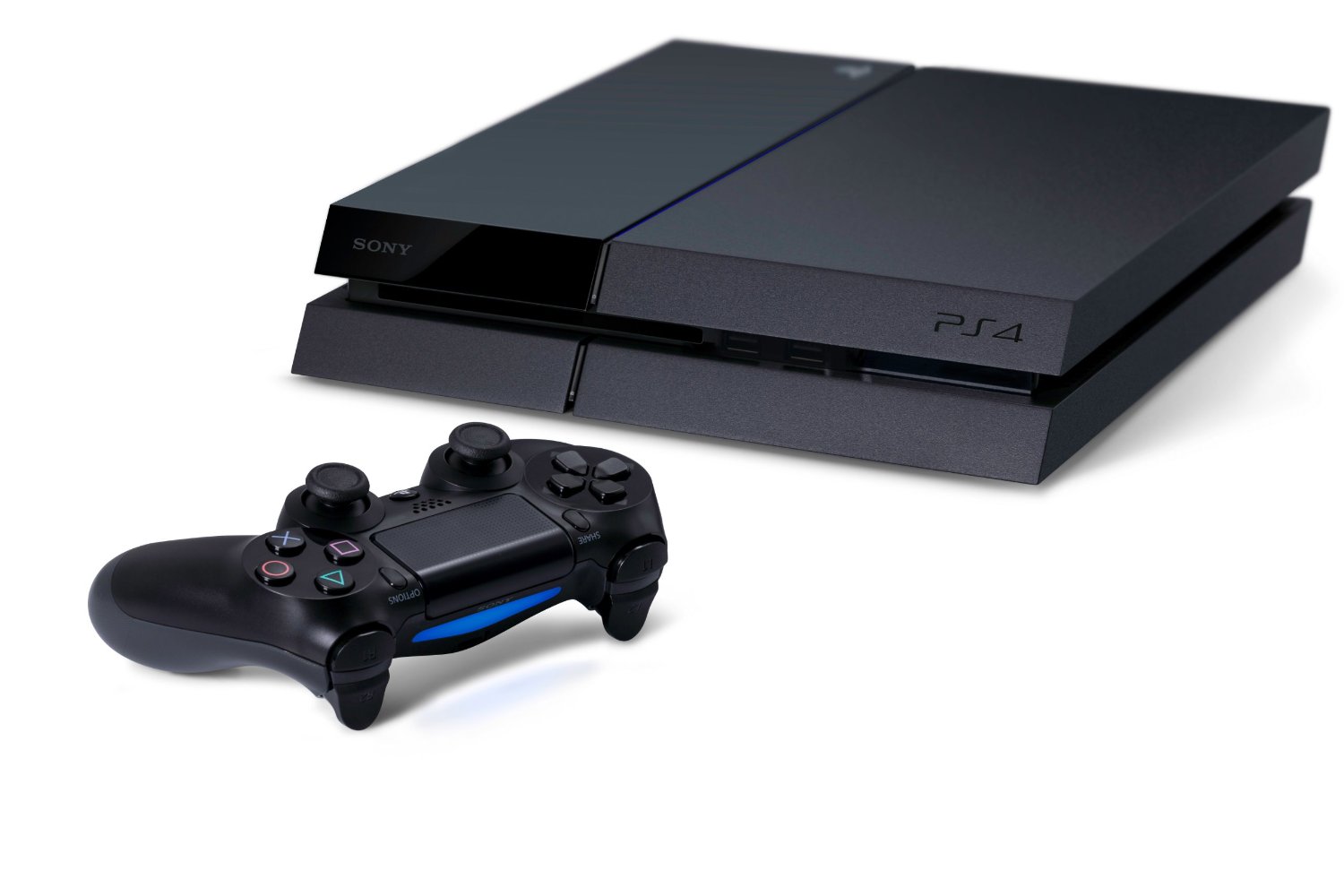
Sony’s superb gaming console arrived just in time for Christmas day, along with a copy of Fallout 4. What more could you possibly want? It was a toss-up between the PS4 or the Xbox One, but in the end I opted for the latest PlayStation purely for the games it has to offer (and Uncharted 4 which is due next year). The ecosystem has so much potential too.
Photo Credit: aslysun / Shutterstock
-

Microsoft explains why it's pushing Windows 10 so aggressively (spoiler: it's to keep you safe)
Publié: décembre 29, 2015, 1:30pm CET par Wayne Williams
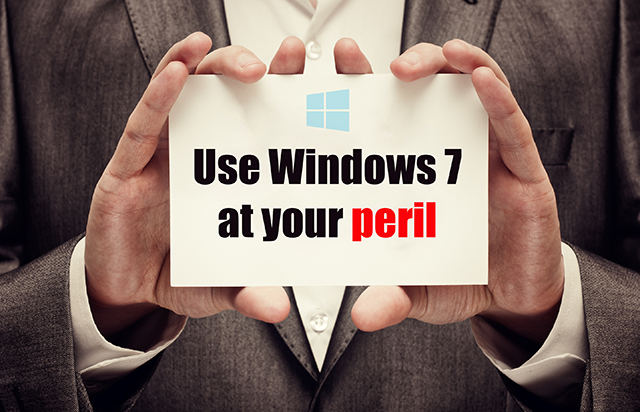
It’s understandable that Microsoft would want to push Windows 10 as much as possible, particularly as the rate of upgrades has been slowing recently. It must be a source of frustration to the company that users of Windows 7 and 8.1 appear so reluctant to switch, even though the upgrade for them is free.
In an effort to guide people on to Windows 10, Microsoft has been using increasingly aggressive methods, including pre-loading the installation files on to users’ systems, regardless of whether they want the new OS or not, and removing the option to opt-out of the upgrade. In the new year Microsoft intends to ramp up its push further, and joining the Windows Weekly team for a question and answer session, Microsoft Marketing Chief Chris Capossela made no apologies for his company’s approach which, he says, is being done to get users to a "safer place".
Sure, users can stay on Windows 7, if they wish, but according to Capossela, you do so "at your own risk, at your own peril".
It’s worth listening to the full Q&A (embedded below), which also covers HoloLens, Surface 4 and Surface Book update, and Windows 10 Mobile with Continuum, but it’s what Capossela had to say about the Windows 10 push which is most interesting:
Look, we made Windows 10 for free, for anybody who has a Windows 8 or 7 machine. You can call that freemium if you want, but that was a decision... you know we didn’t take that decision lightly.
For us, it’s just so incredibly important to try to end the fragmentation of the Windows install base, and so we think every machine that is capable of running Windows 10 we should be doing everything we possibly can to get people to move to Windows 10.
We always want to give them the choice, and we are trying to find the right UI constructs, we are trying to find the right update constructs that we think are going to please as many people as possible.
But we do worry when people are running an operating system that’s 10 years old that the next printer they buy isn’t going to work well, or they buy a new game, they buy Fallout 4, a very popular game, and it doesn’t work on a bunch of older machines.
And so, as we are pushing our ISV [Independent Software Vendor] and hardware partners to build great new stuff that takes advantage of Windows 10 that obviously makes the old stuff really bad and not to mention viruses and security problems.
So, we really are trying to push people to get to Windows 10. Now, the good thing about Windows is that lots and lots of people care, and you get constant feedback. You know, we’re willing to put up with some level of discomfort if we feel like we are getting more and more people to a safer, better operating system that’s frankly better for everyone in the ecosystem. It’s better for Intel, it’s better for Dell, HP, it’s better for our customers, but there’s no doubt we’re trying to find the right balance. There’s no doubt if we could start it all over we would have done a couple of things differently, I think.
The reality is with most modern devices, people just take it for granted that the device is going to be constantly updated. Whether it’s your iPhone, your Android tablet, or what have you, people are very, very comfortable with that notion. Xbox One owners are very comfortable with that notion that it’s just going to stay up to date. PCs, because of the history, and the legacy, it’s slightly uncomfortable for more people, and so we’re going to keep at it. We are going to try to find that right balance, but we just know there’s a lot of people out there who constantly kick the can down the street without a little bit more of a, frankly, a push.
And so, there’s no doubt with a base as big as ours, it is hard to move anyone to a new model without angering some people. We don’t want to anger anybody, but we do feel a responsibility to get people to a much better place, and Windows 10 is a much better place than Windows 7.
We will always give you a way out, but we’re trying to find the right threat balance.
It’s interesting to see Microsoft talking about protecting users and reducing fragmentation. While people refusing to budge from XP is definitely an issue, is there really a Windows fragmentation problem?
Microsoft describes Windows 10 as a much better place than Windows 7, but that’s debatable. Users on Windows 7 aren't in any more danger than those on Windows 10, provided they are sensible and have a decent security software installed, and all printers and new games -- including Fallout 4 -- will work perfectly on the older OS, both now, and in the future. If a PC can’t handle a new game, it’s a hardware upgrade rather than an OS one that’s going to fix the problem.
Microsoft knows it’s annoying some people with its aggressive Windows 10 push, but it doesn’t really care. There’s a slight whiff of "we know better than you" about Capossela’s comments and while there are definitely some people out there who plan to upgrade but are procrastinating -- or "kicking the can" as Capossela puts it -- there are plenty of users who don’t want to switch because they are perfectly happy where they are, or because they don’t like what Windows 10 has to offer them.
Maybe instead of trying to force users of older versions of Windows onto its new OS, Microsoft should take the time to figure out what it is about Windows 10 that’s keeping users away.
Photo Credit: SK Design / Shutterstock
-

Santa brought you an Apple Watch? Here’s what to do first
Publié: décembre 25, 2015, 12:12pm CET par Wayne Williams
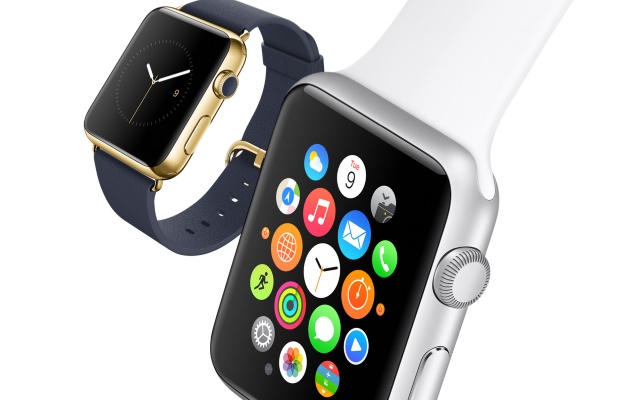
If you were lucky enough to receive an Apple Watch as a present this year, you’ll no doubt be keen to see what it offers, and what you can do with it.
To start you’ll need to pair it with an iPhone 5 or later, running iOS 9 or later. This is straightforward enough, go to Settings > Bluetooth on your phone and make sure the feature is enabled. Press and hold the side button (next to the digital crown) on your Watch to turn it on, and once you’ve selected a language, tap Start Pairing on your watch, and on your iPhone.
An animation will play on your Watch. Hold your phone over this, centering the Watch in the camera's viewfinder, until you see a message stating the Watch is paired. You can always pair it manually if things don’t work out or you don’t see the pairing animation.
On the iPhone, tap Set Up as New Apple Watch and choose which wrist you plan to wear the Watch on. Tap Agree when faced with the terms and conditions.
Sign in to your Apple account and the review the settings. Services like Siri and Location will be synced between devices.
You can set a passcode for the Apple Watch (the device automatically locks when you take it off your wrist), and then sync your iPhone apps to the Watch. Not all of the apps you have on your iPhone will be added to the watch, only the compatible ones. When you browse and buy new apps on your iPhone you’ll be able to see if there’s a Watch app included as well. The Featured section in the Watch app (on your phone) contains a good selection of apps to get you started.
You can install all apps or just sync Mail, Contacts and Messages, and choose which apps to install later on. Removing any apps you don’t want or use is easy enough and done through the Watch app on your phone.
There’s a good chance you’ll receive too many notifications on your Watch, and it will be pinging and tapping you on the wrist repeatedly, so you’ll want to adjust this which, like most things, you can do through the iPhone app. Go to Notifications section.
Once that’s finished, you’re ready to start using the Watch. If there’s an update for WatchOS available, you’ll want to install that, which (again) you can do through the Watch app on your iPhone.
Learn your way around
Once you’re up and running you can spend time getting to know Watch and learn what’s possible with it.
To wake the watch, just angle the screen towards you. If you don’t want to move your wrist to see what’s on screen, you can set it so a tap will wake things up.
The Watch’s digital crown acts as a home button, and is also used for scrolling and summoning Siri. To change the default watch face press down on the existing design, and you can choose an alternative from the selection that pops up.
You can choose which apps to have as glances (the information you require is shown "at a glance"), and these can be accessed by swiping up from the watch face screen. The first glance screen shows you that Watch is connected, and lets you toggle airplane mode, do not disturb or silent modes on or off, and also ping your iPhone-- handy if you’ve misplaced it.
Scrolling from right to left takes you to the activity monitor (which shows Move, Exercise and Stand progress), music player (control the music on your phone), heart rate monitor, battery remaining indicator (you can switch to power reserve here if the juice is too low), the calendar, stocks, maps, world clock, weather and any other glance-friendly apps you’ve installed.
A lot of things you can do with the watch can be controlled through Siri. You can use her to start a song playing on your phone, for example. While Siri can be summoned by pressing the crown, the hands free approach of just saying “Hey Siri” at the Watch works very well.
The Camera app acts as a remote snapper for taking photos with your phone, and there's a 3 second delay option to avoid you having lots of shots with your wrist in front of your face. Photos lets you view images on your watch.
If you intend you use Watch with Apple Pay, set it up through the iPhone app and then double-click the side button on the watch to call up the credit card you added, ready to use with an Apple Pay reader.
Apple Watch is a great device, and I'm sure you'll get plenty of enjoyment from it.
-

Santa brought you a Windows 10 PC or tablet? Here’s what to do first
Publié: décembre 25, 2015, 12:11pm CET par Wayne Williams
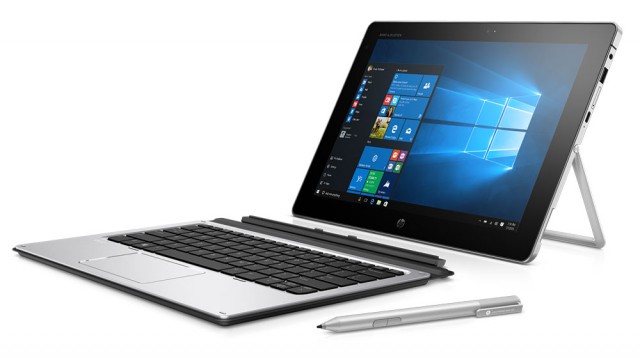
If you were fortunate enough to unwrap a new Windows device this Christmas the chances are it will be running Windows 10.
The new operating system has much to recommend it, as well as a few features that you might not be so keen on (the spying aspect for example). Getting Windows 10 set up exactly how you want it will -- like all versions of Windows -- take a while, but follow this guide and you’ll soon be sorted.
What's new
While Control Panel still exists in Windows 10, most of the configuration options are now found in the Settings app which you can launch from the Start menu. This has sections for Settings, Devices, Network & Internet, Personalization, Accounts, Time & Language, Ease of Access, Privacy, and Update & Security.
There’s a new Action Center which shows notifications, and common settings, and a Task View option (on the taskbar) which lets you view all of your open windows and create and manage virtual workspaces.
Microsoft's personal assistant Cortana, of course, is an integral part of Windows 10. You’ll need to enable the feature before you can start making use of its capabilities. Sign in with your Microsoft account if you haven’t already, click the option and tell Cortana what you’d like her to call you. Listen to how she says your name and if it’s not right, you can tell her and speak your name correctly into the microphone.
Type something into the search box, or click the microphone icon to ask a question. When summoned Cortana will present you with the news and weather and you can customize this by clicking the three dots to the right of each section.
To further customize Cortana's abilities, click the hamburger button at the top left. Go to Settings. This is where you can turn the assistant on or off, change your name, and enable the "Hey Cortana" feature. You can manage Search, including General Cortana & Search Settings, from here too.
Some tweaks to get you started
Entering a password every time you want to use your PC can quickly get annoying, even if you know it’s the secure and sensible thing to do. However, if you really want to you can easily automate the login and bypass the lock screen.
The Windows 10 Start menu can be customized in lots of ways, and you’ll probably want to spend some time doing this. We wrote a full guide on this which you can view here. There are also third-party apps available which you can use to customize things further.
If you’re not a fan of the Windows 10 Start menu, with its live tiles, you can always change it for an alternative Start menu. There are plenty of excellent choices.
You can tweak File Explorer so it just shows the entries you want and use. Changes you can make include removing Quick Access, and removing the OneDrive entry. If you want to completely remove OneDrive from Windows 10 that’s possible too. Windows 10’s Action Center can also be disabled if you have no use for it.
While you're at it, you may wish to make Windows UAC prompts less obtrusive.
Other tweaks to make include managing notifications, importing iTunes playlists into Groove Music, activating Windows 10's secret God Modes, and freeing up space by removing unwanted core apps. There’s a Dark Mode you can enable in the Film and TV app, and if you want to use a video as your account picture you can.
Updates are mandatory in Windows 10, but you can potentially delay and/or block them.
Customize the browser
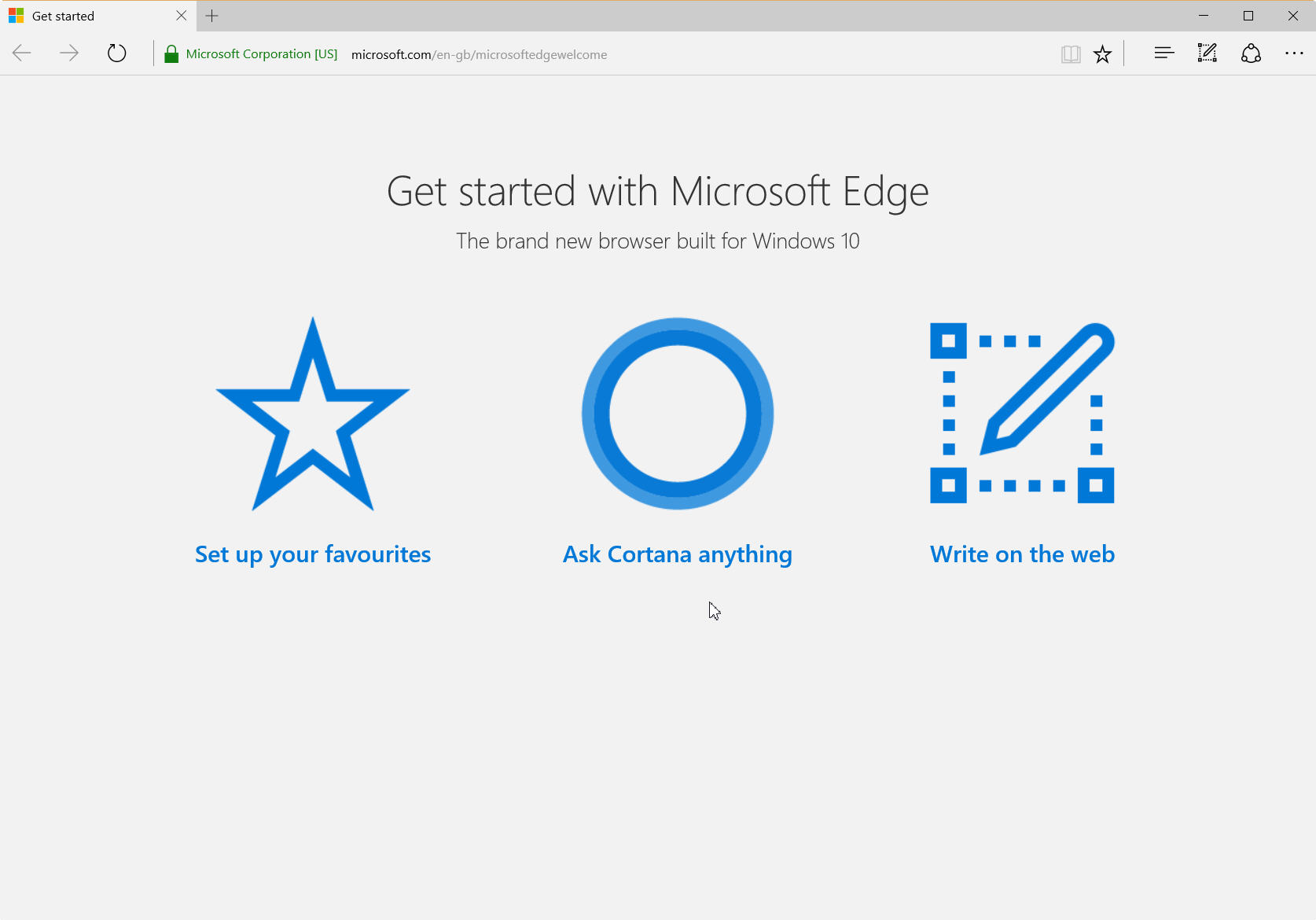
Microsoft Edge is the default browser in Windows 10, and while it’s rather unfinished (no support for extensions being the big omission) it’s serviceable. There are a couple of things you might want to tweak about the browser including changing the default search engine from Bing to Google. If you really don’t like Bing, you can also disable it from Windows 10’s Start menu, and from Cortana.
Changing Edge’s default download folder isn’t easy, but there are a couple of ways to do this, which you’ll find here.
After you’ve used Edge for a while you might want to view and delete your browsing history, and we’ve covered how to do this previously.
Not a fan of Edge? You can make Firefox or Chrome your default browser instead.
Privacy issues
Windows 10 spies on you in myriad ways. You can stop the OS’s keylogger from monitoring what you type, ink, and say, we also have a great guide you can follow which will help you regain control of your privacy.
Keyboard shortcuts
The best way to master Windows 10 is to learn the many keyboard shortcuts that work with the new OS. While a lot of these are universal, some such as Windows key + A (Open Action Center) and Windows key + S (Open Cortana ready for typed input) are new to Windows 10.
There’s a full list of all of the important keyboard shortcuts to be found here.
Troubleshooting
Hopefully Windows 10 will work fine and without problems, but if it doesn’t Microsoft has released a set of useful troubleshooting tools, and we’ve two guides which you can use to fix the operating system’s worst problems. Take a look at part one and part two.
That should be everything you need to get started, so enjoy your new device!
-

How to join Anonymous
Publié: décembre 24, 2015, 2:47pm CET par Wayne Williams

The hacktivist collective Anonymous does a lot of good. It’s been fighting Islamic State online for quite some time, outed Ku Klux Klan members in another operation, and even targeted Kanye West for being a "spoiled child in a grown man’s body", which is hard to argue with.
If you’ve ever aspired to join Anonymous but weren’t sure how or where to begin, here’s the bad news. You can’t "join" Anonymous. Not because you’re not wanted or welcome, but because, as a new recruiting video explains, it’s "not an organization. It is not a club, a party or even a movement. There is no charter, no manifest, no membership fees". That said, if you want to be part of Anonymous you can, and it’s easy to do so.
According to the video, if you share the common goal of Anonymous -- which is change the world for the better -- then you’re "in" if you want to be. Yes, it’s that simple. There’s no one to say you are, or aren’t part of the collective.
The video also explains how to get in touch with other people in Anonymous, and -- just as importantly -- how to protect your identity and privacy. Tips include using a different browser purely for Anonymous and creating new accounts for an Anonymous pseudonym on Facebook and Twitter.
Watch the full video below:
-

Another delay and a major price increase -- is it time for Microsoft to kill the Surface Hub?
Publié: décembre 23, 2015, 2:16pm CET par Wayne Williams
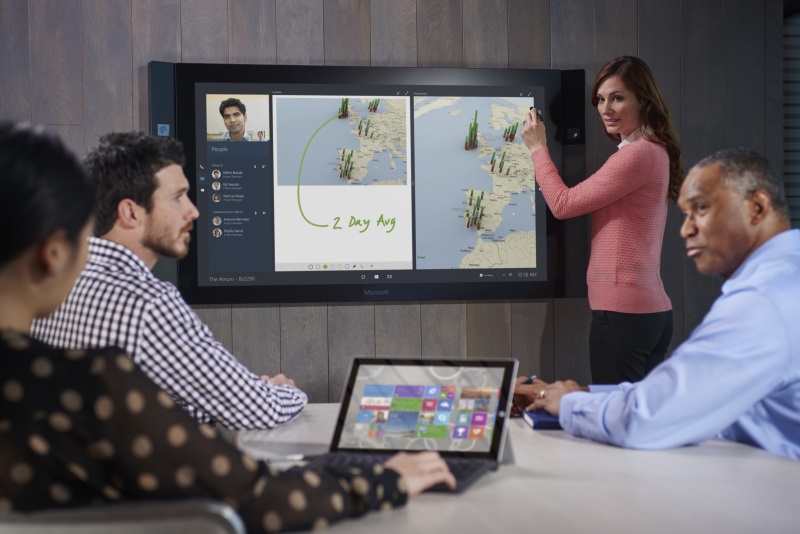
The Surface Hub looks cool. The giant wall-mounted Surface, aimed at businesses, comes in two sizes -- 55-inch and 84-inch -- and boasts 100 points of multitouch, up to three simultaneous pen inputs, dual 1080p front-facing video cameras and a four-microphone array. And the larger model has a 4k touch-screen display that refreshes every 8.33 milliseconds, which is faster than the human eye can detect.
But here’s the problem. Seven months ago Microsoft said the Surface Hub would be available to order in 24 markets -- including Australia, North America, Japan, the Netherlands, Singapore, and the UK -- from July 1, with a shipping date of September 1. But then five months ago, based on "strong demand" it delayed things (with no word of a ship date) and then a month later said orders would start shipping on January 1 2016. But guess what? They won’t.
Microsoft now says the Surface Hub will start shipping in first calendar quarter of 2016, and to accompany this news it’s announced it’s putting up the price too.
The 55 inch model was priced at $6,999 and the 84-inch version at $19,999, but Microsoft has increased both by $2,000. So they are now $8,999 and $21,999 respectively.
Anyone who pre-ordered will receive their Surface Hub at the original cost. If they ever do receive it of course.
Microsoft said that the price increase was necessary to deliver the "best product experience". Although delivering any product to its customers would be a start.
So the question is, will Surface Hub ever see the light of day, or will Microsoft’s next announcement be yet another delay or a complete cancellation of the line? We shall see.
-

2016 IT trends -- Keeping your finger on the pulse of what's next [Q&A]
Publié: décembre 22, 2015, 2:00pm CET par Wayne Williams

A new year means a fresh start, and IT professionals will be looking at how the traditional enterprise can re-evaluate and re-discover itself to take on new relevance.
We’ll see recurring themes -- like cloud, 3D printing, data security, and the Internet of Things -- continuing to remain relevant in 2016. At the same time, these things will continue to blur the lines between enterprises and individual computing, shaping them into intertwined eco-systems. New trends will also emerge and shape the way enterprises operate, how they’re managed and where they’re headed. BetaNews talked with Xchanging’s Global Head of Technology and Innovation, Mani Gopalaratnam, about the trends every IT professional should have on their radar for 2016. Here’s what he had to say:
BN: Thanks for talking with us, Mani. Give us an overview of what you see as the defining IT trends for next year, and then we’ll drill down into a few of them more deeply.
MG: My pleasure, Wayne. As we enter 2016, massive adoption of mobile devices through relatively fast networks are redefining end-user engagement and personalization, while wearable technologies are coming of age. Electronic payments are becoming increasingly prevalent, providing a slew of new data and transactional granularity, while automation that enables bridging legacy and modern systems will reach a peak through robotic process automation. These trends, and others, make it mandatory for social, mobile, analytics and cloud to be adopted by enterprises in order to survive in the years ahead.
BN: Thanks, Mani. That’s a lot to take in. With all of that said, is there an umbrella theme you think will emerge in the mind of IT pros?
MG: Forrester said in a recent report titled Lead The Customer-Obsessed Transformation that "…the only way to retain customers and their loyalty is to become customer-obsessed". If I had to boil it down to one umbrella theme, I’d say IT professionals in 2016 will be largely driven by this.
BN: That makes a lot of sense for the primary theme we’ll see next year. On a more granular level, what would you deem the top trend for 2016?
MG: 2016 will be defined by huge investments by organizations looking to fortify their cyber security protocols. Increased dependence on technology requires a different strategy to secure the underlying data. Take for example Gemalto’s twice-yearly Breach Level Index (BLI), which noted that in the first half of 2015 alone, the number of records breached was just under 246 million across nearly 900 disclosed incidents, with so called "mega-breaches" accounting for 82 percent of the records compromised. I’d say the biggest trend is that we’ll see more businesses go on the cyber security offensive. With adaptive and offensive cyber security emerging, a new predictive defense mechanism will exist. The modern security architecture will continuously detect, prevent, analyze and respond to threats. Businesses will live by this.
BN: We agree cyber security will continue to be a topic that’s a mainstay in the media and on IT professionals’ minds. What else will be top of mind?
MG: Here are a few more key trends to watch for:
- The world will become more hyper-connected than ever -- Fueled by the proliferation of billions of devices, hyper-connectivity will generate data about everything: Locations, atmospheric data, speed, health information -- and so on. This will lead to the creation of new products and business models, "Googlism" and "Uber-fication" being two examples.
- Big data will rule -- Big data will no longer be an aspiration. It will be a critical part of any successful enterprise.
- The API economy will lead legacy migration -- The ability for big enterprises to create APIs, as opposed to monolithic applications that enable a mass of developers outside the system to create point applications -- will accelerate. Programmers’ efficiency will be measured by their ability to bring applications to life rather than their coding strength. The so-called API economy will be the underpinning growth engine for the hyper-connectivity and big data.
- CRM will no longer follow the traditional cycles -- More customer intelligence and personalization that elevate level of services -- from a multi-group segmentation to a segment of one -- will be the way to go for CRM. It will leverage both hyper-connectivity and big data (are you starting to see some recurring themes here yet?). The digitalization drive requires that businesses know the needs of their users before the customer even knows the need themselves.
BN: All good points, Mani, and trends we would agree will be prominent in 2016 and beyond. Any closing thoughts?
MG: My final thought would be the criticality for businesses to adopt and adapt to a changing IT landscape. Doing business without technology is not an option. As even traditional industries, like insurance, look to modernize legacy systems, it should be known that there is a price to pay for missing the boat on embracing technology. Don’t let your organization be burdened by this. Stay ahead of the changing landscape.
Photo Credit: ArTono/Shutterstock
-

Upgrade from Windows 10 Home to Pro using this product key
Publié: décembre 21, 2015, 10:29pm CET par Wayne Williams
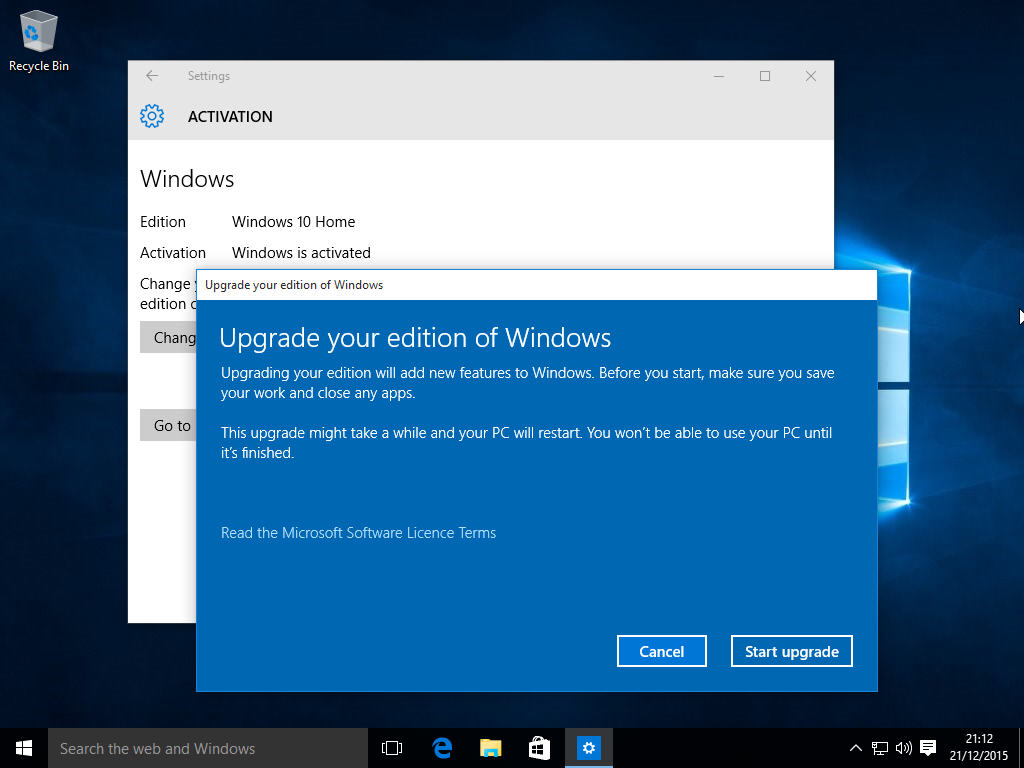
If you’re running Windows 10 Home and want to know whether it’s worth moving on to Windows 10 Pro, there’s a straightforward way of switching between the two versions of Microsoft’s latest operating system.
All you need to do is swap your current Windows 10 Home product key for the default Windows 10 Pro one which Microsoft has made available to all users.
On the Microsoft Community Forums, Charles of Microsoft says:
From your Windows 10 Home running Version 1511, enter the Windows 10 Pro Default key under change product key.
VK7JG-NPHTM-C97JM-9MPGT-3V66T
This default key will not activate the system, just take you to Pro so you can activate using a valid Pro key that you will provide.
Once you have done this, the system will go through an upgrade process from Home to Pro, but will not be activated on Pro.
As you can see from the above, while this will upgrade your copy of Windows 10 Home to Pro, what it won’t do is activate it. If you decide you like the Pro version, you will need your own product key to activate the OS and use it permanently.
To switch product keys, open Settings and go to Update & security > Activation > Change Product key. Enter the product key from Microsoft (VK7JG-NPHTM-C97JM-9MPGT-3V66T) in the space provided. The upgrade process takes quite a while to complete so be patient.
If you want to buy a key for Windows 10 Pro, go the Activation page in Settings and click the Go to Store button.
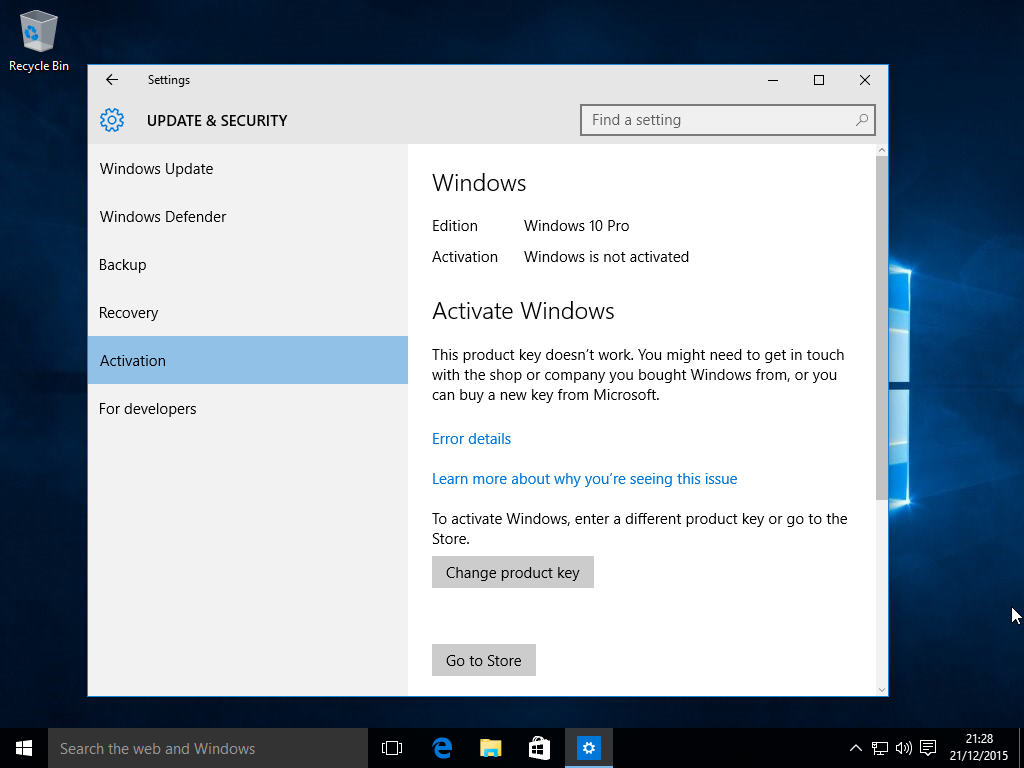
-

Microsoft announces Windows 10 Mobile Preview Build 10586.36, the last Windows 10 Insider build of 2015
Publié: décembre 17, 2015, 8:47pm CET par Wayne Williams
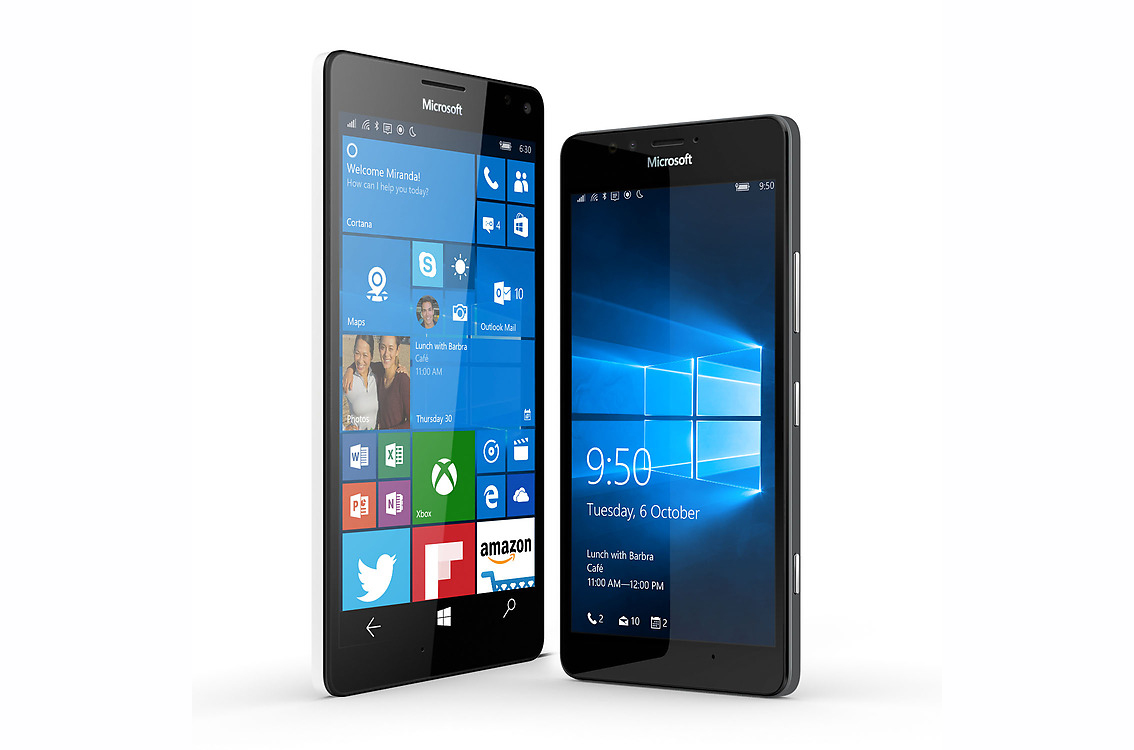
Microsoft pushed out a new Windows 10 Insider Preview PC build to the Fast ring yesterday, and today it follows that up with a new update for Windows 10 Mobile.
Build 10586.36 is, as you can guess from the name, a cumulative update and will be released to Windows Insiders in both the Fast and Slow rings.
According to Microsoft’s Gabe Aul:
This build continues to address feedback we’ve received from Windows Insiders as well as customers using our brand new Windows 10 phones like the Lumia 950 and Lumia 950 XL. As with the previous release, this Cumulative Update continues to use the minor version for differentiating between each version.
So in other words, fixes and tweaks are the order of the day.
SEE ALSO: Microsoft pulls its latest buggy Windows 10 Mobile build [Updated]
Cumulative updates like this won’t, in future, be accompanied by blog posts, rather the announcements will appear in the Insider Hub, and on Twitter.
Aul also explains that there won’t be any new updates for Windows Insiders until the new year.
This time of year many of us take the opportunity to spend time with family and take some vacation time, so the engineering team will be running at a slower pace and many of our key people who drive our flighting process will be out (including me ) This means we won’t be releasing any new builds to Windows Insiders until January, for both PC and mobile.
-

Microsoft releases Windows 10 Redstone Build 11082 to Insiders on the Fast ring
Publié: décembre 16, 2015, 7:27pm CET par Wayne Williams
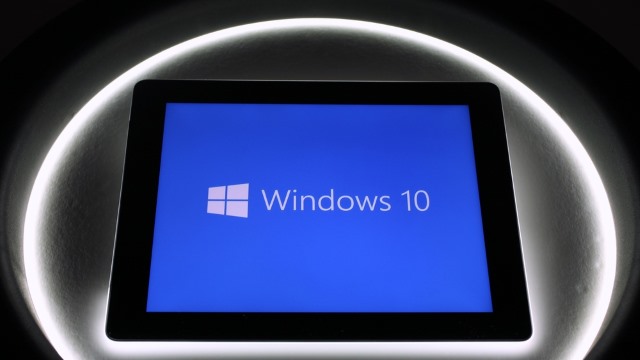
Having rolled out Threshold 2 under the guise of the November Update last month (and then removed and reinstated it shortly afterwards), Microsoft is now on the Redstone branch of Windows 10 development -- the next big update which will be pushed out to all users of its new operating system next year.
Build 11082 is now available for Windows Insiders on the Fast ring and Microsoft’s Gabe Aul introduced the new build saying:
With this build, you won’t see big noticeable changes or new features just yet. Right now, the team is focused on product improvements based on the feedback we’re hearing on the November update to Windows 10. This includes the changes that have also been going out as cumulative updates through Windows Update on your PCs running the Windows 10 November Update as well as on phones running Windows 10 too.
We’re also working on some structural improvements to OneCore, which is the shared core of Windows across devices. Essentially, OneCore is the heart of Windows, and these improvements to OneCore make building Windows across PC, tablet, phone, IoT, Hololens and Xbox more efficient. We’re doing some code refactoring and other engineering work to make sure OneCore is optimally structured for teams to start checking in new features and improvements in the new year.
As well as the new build, Microsoft announces it has taken the decision to ramp up the speed at which Insiders on the Fast ring receive new versions. In other words, the Fast ring actually will start living up to its name. Microsoft plans to pick up the pace from January, although the company warns this will likely result in buggier builds. If this doesn’t sound like it’s for you, you might want to consider switching to the Slow ring instead. You can change rings by going to Settings > Update & security and clicking the Advanced options link.
Photo credit: Stanislaw Mikulski / Shutterstock
-

Amazon selling illegal weapons in the UK
Publié: décembre 16, 2015, 1:49pm CET par Wayne Williams
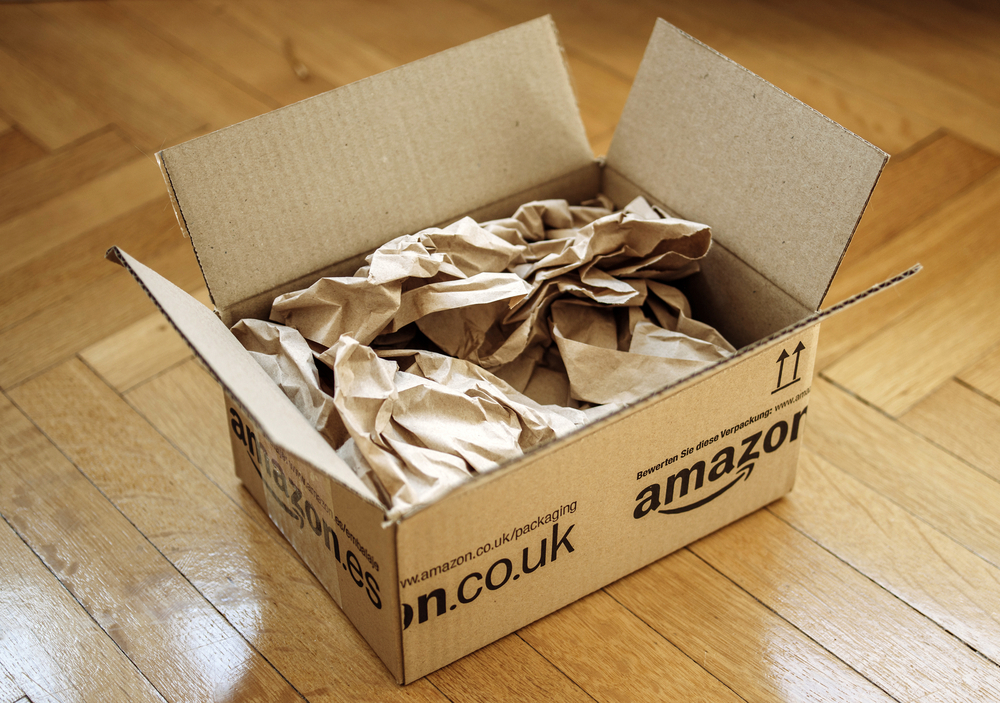
Unlike the US, the UK has tight firearms and offensive weapons laws designed to prevent easy access to guns, stun guns, knuckledusters, bladed items and so on.
However, an investigation by the Guardian has discovered that Amazon UK is selling banned and dangerous weapons in contravention of the law, and will even cheerfully gift-wrap them for you.
The newspaper successfully managed to test-purchase three illegal items:
- A pistol that fires a jet of high-strength pepper spray at 112mph
- A 1m-volt stun gun disguised as a torch
- A baseball cap containing a hidden stabbing knuckleduster in its peak
While the stun gun and bladed baseball cap came from third-party sellers, the pepper spray pistol was sold directly by Amazon.co.uk and dispatched from the company’s warehouse just outside Milton Keynes.
The Guardian also found a large number of other illegal weaponry for sale on Amazon's UK site.
Upon being alerted to the presence of the items, Amazon removed them from its website immediately, and issued the following statement:
All [Amazon] sellers must follow our selling guidelines and those who don’t will be subject to action including potential removal of their account. The products in question are no longer available.
The retail giant didn’t comment on the fact it was the seller of the pepper spray gun.
Image Credit: Hadrian / Shutterstock
-

The $5 Raspberry Pi Zero back in stock -- but you'll need to act fast
Publié: décembre 14, 2015, 1:15pm CET par Wayne Williams

Three weeks ago the Raspberry Pi Foundation shocked pretty much everyone with a new version of its popular barebones microcomputer. While previous models were hardly expensive, the new Raspberry Pi Zero was just $5 (plus any extras you required, of course).
Inevitably, demand was huge and the Zero sold out pretty much immediately.
If you’ve been waiting to get your hands on the new model, the good news is it is back in stock at most places from today.
As you might expect, stock is still very limited though -- there’s a one device per person restriction in place -- and there’s a very good chance it will sell out again quickly, so don’t delay.
You’ll be able to get it from element14, The Pi Hut and Pimoroni in the UK where it’s priced at £4, and from Adafruit and in-store at your local branch of Micro Center in the US. You might need to wait a short while for stock to appear on the website.
-

How to enable the Dark Mode in Windows 10's Films & TV app
Publié: décembre 14, 2015, 12:49pm CET par Wayne Williams
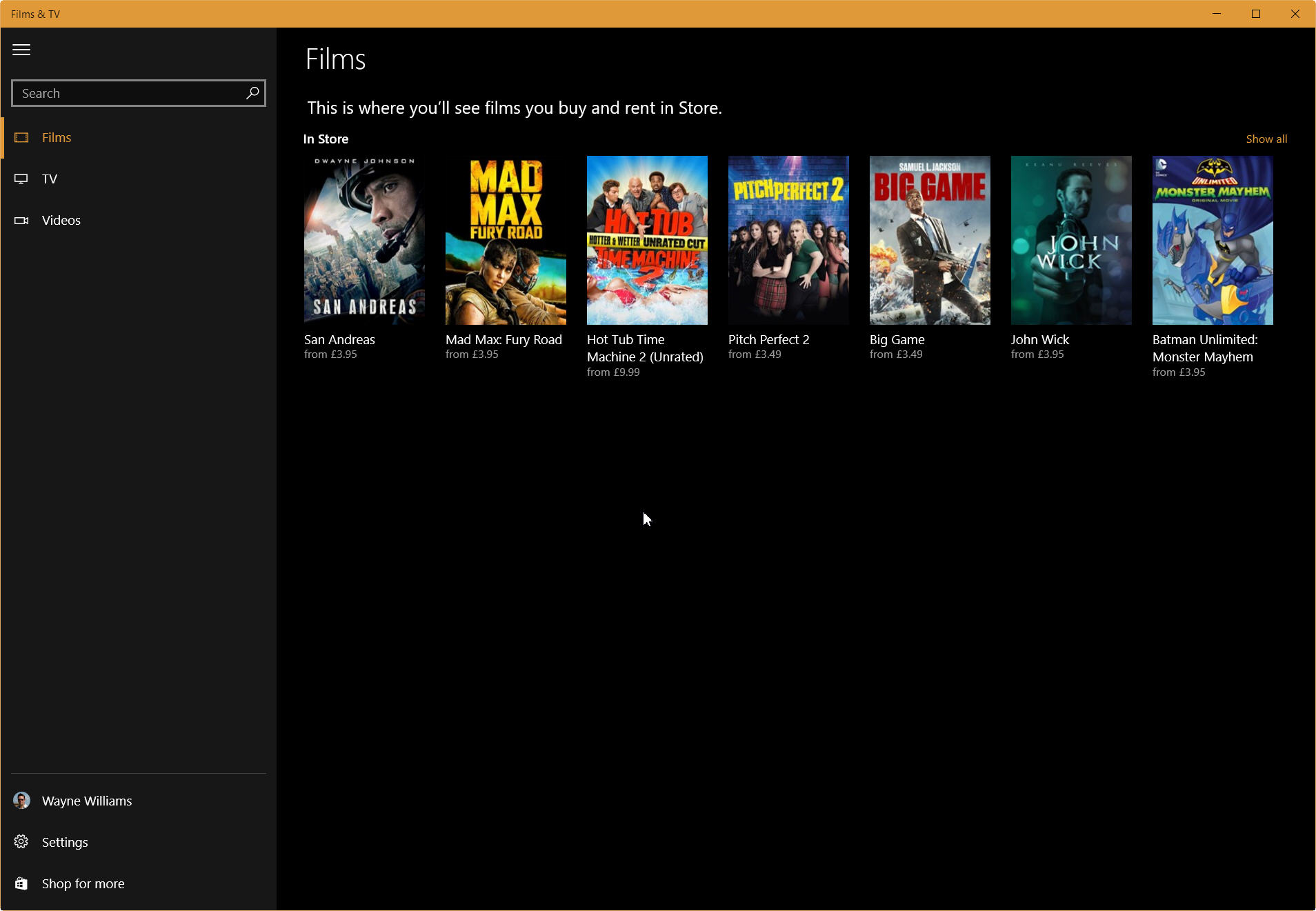
Windows 10 is still very much a work in progress, as are the apps that come as part of it. The November Update (aka Theshold 2) introduced some cosmetic changes throughout, and there have been other changes made in the many other updates.
The Films & TV app recently gained a new Dark Mode which improves things greatly, but it’s disabled by default. Here’s how to turn it on.
The Light Mode look is fine, but if you want to try out the Dark Mode it’s easy enough to enable it. You will need to be running the latest version of the app and you can check you have the correct version by opening the Windows Store, and clicking on your account icon at the top. Select Downloads and Updates, and then Check for updates. Download the latest version from the list.
Once it’s been updated, launch the Films and TV app via the Start menu.
Click the Settings button in the left sidebar. You’ll see a Mode menu. Select Dark to enable the dark theme. Close the app and reopen it to see the change.
-

Focus by Firefox is a content blocker for Safari users on iOS 9
Publié: décembre 8, 2015, 4:09pm CET par Wayne Williams
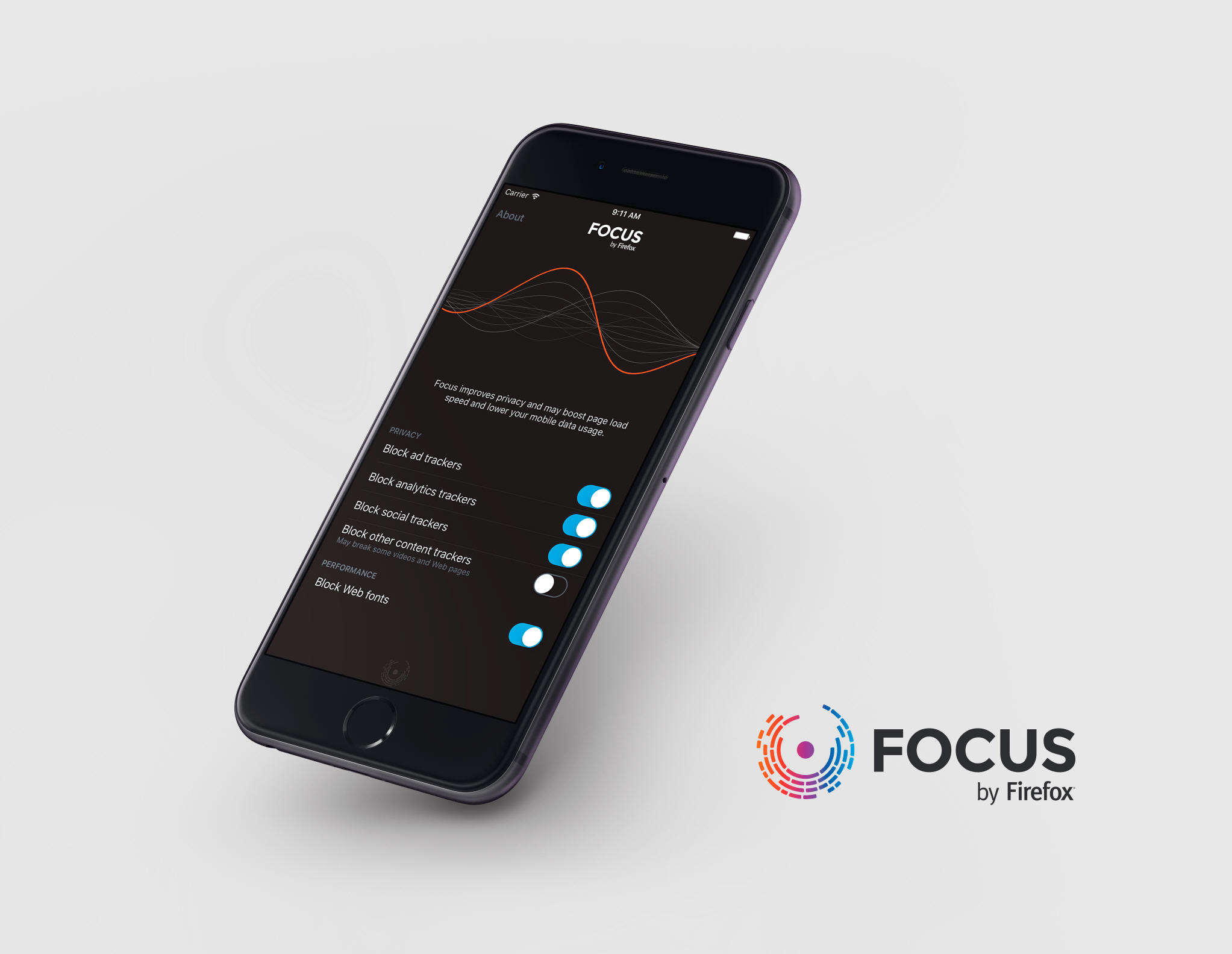
Ever since Apple allowed adblockers on iOS 9, we’ve seen a steady influx of these types of apps appearing in the App Store. Today, yet another one arrives, but this new release has an interesting pedigree, coming as it does from Mozilla.
Focus by Firefox is a free content blocker for Safari users on iOS 9 that gives users greater control over their privacy by allowing them to block categories of trackers such as those used for ads, analytics and social media.
The app will block the same trackers that are targeted by Private Browsing with Tracking Protection in Firefox for Windows, Mac, Linux and Android, based on Disconnect’s open source blocklist.
To install the app you’ll need to download it from the App Store (it's not there at the time of writing, but should be available soon) and then open it to complete the configuration.
What’s quite amusing is Focus by Firefox only works on Safari in iOS 9, not Firefox, since Apple doesn’t allow ad blockers on third-party browsers. Mozilla is hoping to make it available for its own browser in the future, however.
-

IDC: Forget tablets, the PC could be set for a comeback in 2016
Publié: décembre 8, 2015, 3:57pm CET par Wayne Williams

It used to be that a new version of Windows would be a major shot in the arm for PC sales, but that’s no longer the case. According to IDC’s Worldwide Quarterly Tracker, shipments are expected to fall 10 percent in the fourth quarter of 2015, bringing the overall decline for the year down by 10.3 percent.
As a result, IDC has revised its forecast for next year, but it does see things stabilizing by the end of 2016, and even predicts some growth.
The analyst firm forecasts sales in the United States, Western Europe, and Asia/Pacific (excluding Japan) continuing to fall, but only fractionally, with Canada improving slightly, and Japan and Middle East and Africa (MEA) experiencing double-digit lower growth over the next year or more.
IDC has a lot of faith in Windows 10, and remains "optimistic that replacements of commercial and consumer systems will ultimately stabilize the market and even drive growth".
SEE ALSO: Windows 10 set to be the most widely installed version of Windows ever
IDC believes that waning interest in tablets and minimal growth in smartphones will see users returning to the PC globally, although not so much in the United States where other form factors, including detachable tablets, will continue to reign supreme.
"Despite the substantial shift in spending and usage models from PCs toward tablets and phones in recent years, very few people are giving up on their PC -- they are just making it last longer", said Loren Loverde, Vice President, Worldwide Tracker Forecasting and PC research.
"The free upgrade to Windows 10 enables some users to postpone an upgrade a little, but not indefinitely. Some consumers will use a free OS upgrade to delay a new PC purchase and test the transition to Windows 10. However, the experience of those customers may serve to highlight what they are missing by stretching the life of an older PC, and we expect they will ultimately purchase a new device. As detachable systems become more compelling (including attractive new Wintel designs), some volume will go to detachable tablets rather than traditional PC form factors, which will cut into the PC growth rate, but still supports the PC vendors and ecosystem".
Photo Credit: ostill /Shutterstock
-

Microsoft continues to force Windows 10 on people who don’t want it
Publié: décembre 7, 2015, 8:08pm CET par Wayne Williams

This might come as a surprise to Microsoft, but not everyone wants to upgrade to Windows 10. As the slowing pace of the updates shows, there are plenty of people who are more than happy with Windows 7 or 8.1, and who don’t want to switch to the new OS.
While some people are simply delaying the upgrade, plenty of other users have no interest at all in Windows 10, and are actively taking steps to avoid it. But "no" doesn’t mean "no" to Microsoft. It apparently means "Yes, I want to upgrade"!
Those people who are trying to block the Windows 10 update using tools like GWX Control Panel or I don't want Windows 10 have found that the update just will not go away.
Josh Mayfield, the author of GWX Control Panel, discovered users who specified that they did not want Windows 10 (via his program’s AllowOSUpgrade switch) have had their preferences reset up to several times a day and the update presented to them again.
As reported by Computerworld, Mayfield found via a monitoring component that this behavior was caused by the recent updates released to Windows 7 and 8.1 that are designed to make upgrading to Windows 10 easier, and by Microsoft re-releasing its Get Windows 10 update several times in a sneaky way. "It [Microsoft] doesn't change the name of the update, but every version is new, with new binary files" Mayfield says, which makes it harder to block.
SEE ALSO: Windows 10 uninstalling user programs without permission
Microsoft has stated that it intends to push the new OS much more heavily in the new year, making Windows 10 available as an Optional update in Windows Update and then switching it to a Recommend update shortly afterwards. That latter step will lead to the OS being installed on any systems that are set to automatically process recommended updates. Users will be able to cancel the upgrade process, but it seems very likely that doing so won’t be the end of the matter. Given Microsoft's determination to force Windows 10 down users' throats, don't be surprised if the install process starts again, and again, until users finally capitulate and allow the upgrade.
Microsoft wants as many people on Windows 10 as possible, and it seems as if it will do whatever it takes to make sure that happens.
Image Credit: Master1305 / Shutterstock
-

Microsoft releases new Windows 10 Mobile Insider Preview Build 10586.29
Publié: décembre 5, 2015, 9:51am CET par Wayne Williams

Microsoft is continuing to refine and polish its new mobile operating system, and is working to address feedback and issues reported by Windows Insiders.
The latest Windows 10 Mobile build doesn’t contain any exciting new features but rather is a cumulative update, which explains the new build number -- 10586.29. Microsoft is also planning to make this build available to additional devices early next week.
Gabe Aul, Corporate Vice President, Engineering Systems Team, writes: "Today we are releasing our first Cumulative Update to the Windows 10 Mobile Insider Preview Build 10586 to Insiders that begins addressing this feedback. The first thing you will notice with this Cumulative Update is it will use the minor version for differentiating between each version as these builds only contain fixes to the Windows 10 Mobile Insider Preview build already in the Fast and Slow rings. So this build will appear as 10586.29".
Aul lists the following improvements:
- You will see additional improvements in upgrade experience, including devices with limited free space, map rendering on update, and RCS enabled device settings.
- Improved application backwards compatibility for Windows Phone 8.1 Silverlight applications.
- Edge performance and stability has been improved. Auto-completion has been updated to allow user to more easily edit the end of the URL in the address bar.
- Additional Bluetooth stability improvements.
- We have resolve issues on switching the active cellular connectivity profile on Dual SIM devices.
- Data profiles are now correctly restored in the out of box experience that would prevent some devices from sending or receiving MMS messages.
-

Microsoft makes upgrading to Windows 10 a smoother experience for Windows 7 and 8.1 users
Publié: décembre 2, 2015, 10:45am CET par Wayne Williams

Microsoft really, really wants people to upgrade to Windows 10. Even though the new OS is free, users of Windows 7 and 8.1 are proving a bit reluctant to switch, so the software giant has rolled out some new updates for the older operating systems which promise to make the upgrade much smoother for those who do decide to take the plunge.
There are two updates available now, one for Windows 7 and one for Windows 8.1, both of which make improvements to the Windows Update Client.
For Windows 8.1 and Windows Server 2012 R2 users the update is KB3112336, while Windows 7 and Windows Server 2008 users are offered KB3112343. Both are optional.
The update description says:
This update enables support for additional upgrade scenarios from Windows 8.1 to Windows 10, and provides a smoother experience when you have to retry an operating system upgrade because of certain failure conditions. This update also improves the ability of Microsoft to monitor the quality of the upgrade experience.
Photo Credit: fotoscool/Shutterstock
-

Windows 10's growth continues to slow as Windows 7 and 8.x gain share
Publié: décembre 1, 2015, 11:35am CET par Wayne Williams

NetMarketShare has released its usage share figures for November, and they make for interesting reading. As you would expect, Windows 10 grew its share again, but the growth rate is clearly tailing off, continuing the trend we’ve seen over the past few months.
Windows 7 and 8.x users show no great rush to migrate to the new OS, with only Windows XP shedding users.
XP had 11.68 percent of the market in October, but this dropped by 1.09 percentage points in November, and it now stands on 10.59 percent.
Windows 7, the undisputed king of operating systems, went from 55.71 percent to 56.11 percent, a gain of 0.4 percentage points. Windows 8 increased share, going from 2.54 percent to 2.88 percent, while Windows 8.1 went from 10.68 percent to 11.15 percent. Combined, Windows 8.x increased its share by 0.81 percentage points and now sits on 14.03 percent.
In November, Windows 10 took 9 percent of the market, which isn’t bad considering the OS has only been out for a matter of months, but there’s a clear slowing of growth for Microsoft to be concerned about. In September, the new OS grew by 1.42 percentage points, in October it grew by 1.31 and in November Windows 10 increased its share by 1.06 percentage points.
At the rate it’s going it will be quite some time until it catches up with Windows 7.
SEE ALSO: Microsoft confirms the Windows 10 November Update WAS pulled -- and this is why
What makes this all so interesting is that despite Windows 10 being free, and Microsoft pushing its new OS so heavily (going so far as to download the files on to host systems in readiness, whether the owner wants Windows 10 or not) there’s a clear reluctance for users to make the switch.
There are several reasons for this -- firstly, users are satisfied with their existing OS and see no reason to change. That’s certainly the case with Windows 7. Secondly, Windows 10 remains an operating system that’s far from finished. There are bugs, mandatory updates that in some cases screw things up rather than improving them, rough edges throughout, and general annoyances -- like Windows spying on its users -- that make the idea of switching operating systems rather unappealing for a lot of people.
I like Windows 10 -- a lot -- but if I didn’t need to be running the latest OS for my work, would I upgrade from Windows 7? It's unlikely. Swapping a stable polished operating system for one that’s not quite ready for prime time simply wouldn’t make sense at this point.
It will be interesting to see how Windows 10 does in December.
Image Credit: Vladimir Gjorgiev / Shutterstock
-

The tech item I'm most thankful for in 2015 [Wayne]
Publié: novembre 26, 2015, 6:22pm CET par Wayne Williams

I’m lucky I get to try out a lot of tech and, like my colleagues here at BetaNews, I buy a fair amount of shiny new products too. 2015 has been a good year for new hardware and I have a long list of items that have become essential to my daily life.
I picked up a trio of new Apple products this year -- an iPhone 6s, an iPad Air 2, and an Apple Watch -- but as much as I love them all, not one of those is the product I’m most thankful for in 2015.
Like my colleague Alan Buckingham, who picked Amazon Echo as his favorite product, I’ve also chosen an Amazon device -- the Fire TV stick.
I’ve never been particularly interested in joining Amazon Prime, but this year I decided to give it a go. Amazon hooked me by discounting Prime memberships, and also offering money off the Fire TV Stick. I figured if I was going to make proper use of Prime, I needed some way of watching all of that video that Amazon offers for free, and the Fire TV Stick was it.
The device comes with a remote control, naturally, but you can also control things using your smartphone and the free Fire TV app.
The quality of programming available to watch is staggering. Yes, there’s excellent original content such as The Man in the High Castle (which I love), and Transparent, and next year we’ll see the return of the Top Gear trio -- Clarkson, Hammond, and May -- but there are blockbuster movies, popular series and pilot episodes to enjoy too. The content is refreshed just regularly enough.
The Fire TV stick does require a Prime membership to benefit from it, but shop today and you can pick up the dongle for just $24.99 (usual price $39.99), which is an absolute steal.
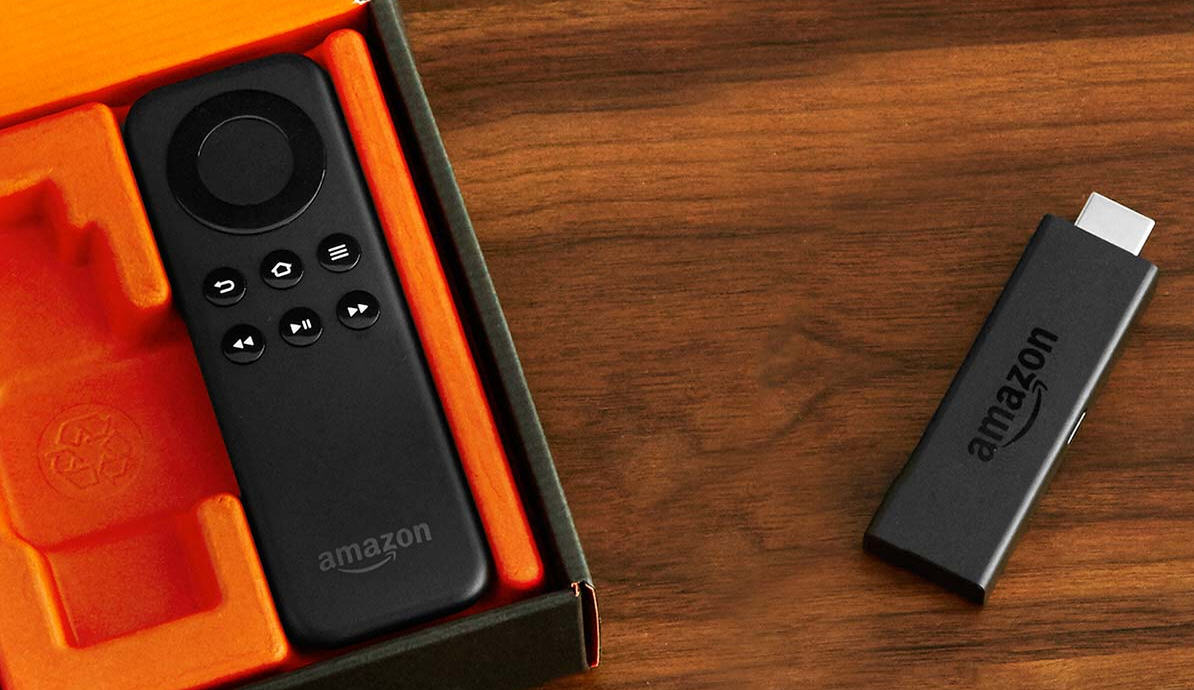
Image Credit: Alex_F / Shutterstock
-

Raspberry Pi Zero is a $5 computer -- seriously -- buy it today!
Publié: novembre 26, 2015, 8:36am CET par Wayne Williams

The various existing models of the Raspberry Pi aren’t exactly expensive. The top of the line device -- the Raspberry Pi 2 Model B -- costs just $35. But if that’s a little too rich for you, how about a model that costs just $5?
If it was the beginning of April, you might expect this to be an April Fool, but the Pi Zero is real, and available now, although it may well have sold out by the time you read this because, at just five bucks (the cost of an over-priced flavored large latte), demand is bound to be high.
The bare bones system, which measures just 65mm x 30mm x 5mm, runs the Raspbian OS and all of the popular applications, such as Scratch, Minecraft and Sonic Pi. It boasts the following specs:
- A Broadcom BCM2835 application processor
- 1GHz ARM11 core (40 percent faster than Raspberry Pi 1)
- 512MB of LPDDR2 SDRAM
- A micro-SD card slot
- A mini-HDMI socket for 1080p60 video output
- Micro-USB sockets for data and power
- An unpopulated 40-pin GPIO header
- Identical pinout to Model A+/B+/2B
- An unpopulated composite video header
The Pi Zero is available today in the UK from element14, The Pi Hut and Pimoroni, where it’s priced at £4, and in the US from Adafruit and in-store at your local branch of Micro Center.
Amusingly, purchasers of the The MagPi magazine (available in the UK), get a free Pi Zero stuck to the front of the cover. Whoever thought there would come a day when covermounted programmable computers were a real thing?
We have a Pi Zero winging its way to us, and will have a full review of it soon.
-

Volvo now lets you have Christmas shopping delivered directly to your car
Publié: novembre 24, 2015, 11:39am CET par Wayne Williams
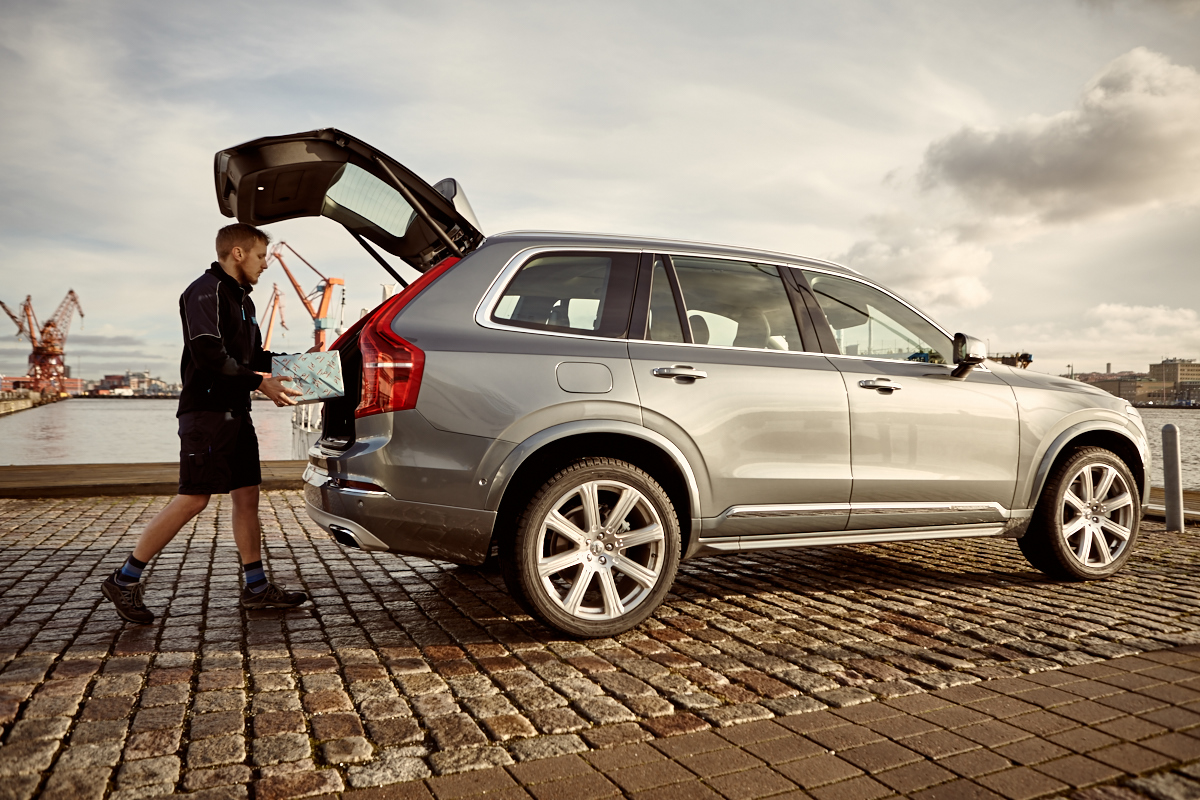
Shopping for presents for the holidays, or for bargains for yourself during Black Friday and Cyber Monday can be a nightmare. A lot of people opt to shop purely online in order to avoid the hassle of fighting their way through crowded stores.
You can get the items you buy on the web delivered to various locations, including home and work, but if that’s still not convenient enough for you, how about having the deliveries made directly to your car instead?
Volvo has launched the world’s first commercially available in-car delivery service. It works by means of a digital key, which is used to gain one-time access to your vehicle.
Volvo drivers simply order the goods online, and choose the In-car Delivery option at the online checkout. They’ll receive a notification when the items have been delivered and can drive home with them.
"Christmas is fun -- but let’s be honest, it is also a busy time for most families. This service simply makes shopping easier", said Björn Annwall, Senior Vice President for Marketing, Sales and Service at Volvo. "Volvo In-car Delivery provides concrete proof that connected car technologies can be used to save people time and make their lives easier".
Volvo In-car Delivery is currently only available for Volvo drivers in Gothenburg who subscribe to the Volvo On Call service, but it will be introduced elsewhere in Sweden and to other countries in the future.
The car manufacturer has teamed up with PostNord, the Nordic region’s leading communication and logistics supplier, Lekmer.com, the leading Nordic online toy and baby goods store, and Mat.se, a Swedish online grocery retailer, to have Christmas toys, gifts, food and drinks delivered to its cars.
There will also be a wider range of goods available for In-car Delivery as Volvo joins forces with more companies.
-

Windows 10 set to be the most widely installed version of Windows ever
Publié: novembre 23, 2015, 11:30am CET par Wayne Williams
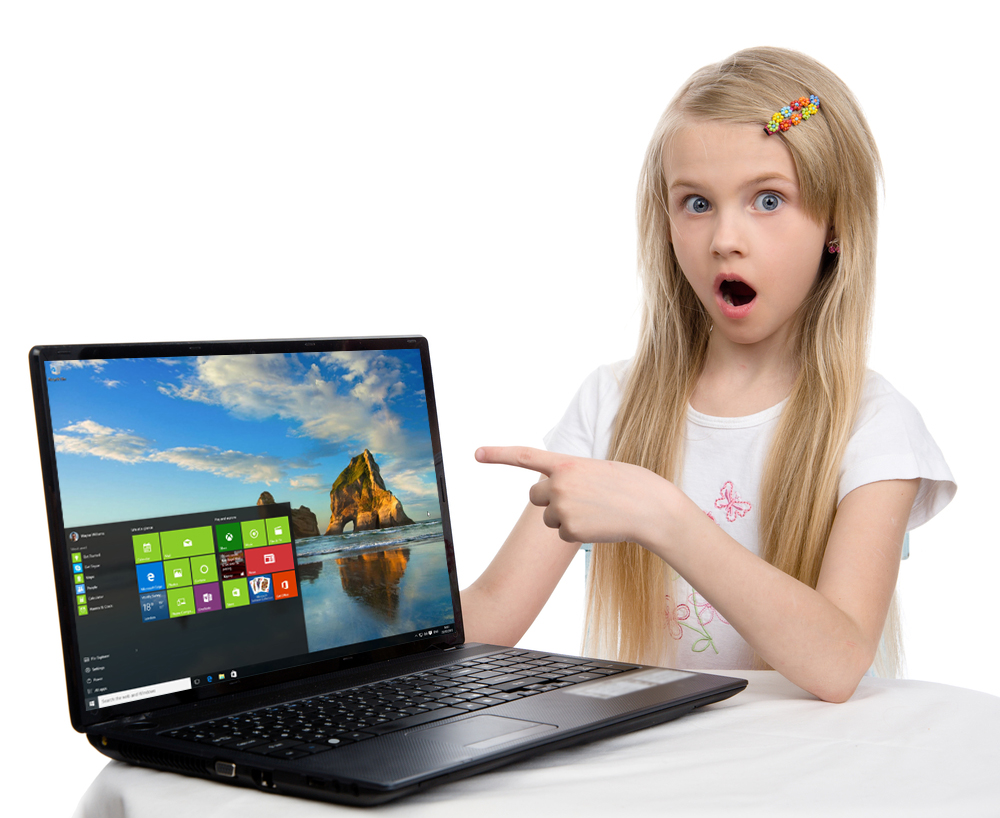
Windows 10’s growth might have slowed quite dramatically in recent months, but never underestimate the power of free.
According to the latest prediction from Gartner, the new operating system is set to enjoy not only the fastest growth of any version of Windows, but is poised to become the most widely installed Microsoft OS ever, quickly overtaking both XP and Windows 7.
"In the consumer market, a free upgrade coupled with broad legacy device support and automatic over-the-air upgrades ensures that there will be tens of millions of users familiar with the operating system (OS) before the end of 2015", said Steve Kleynhans, research vice president at Gartner. "For enterprises, we expect that implementation will be significantly more rapid than that seen with Windows 7 six years ago".
Gartner predicts that 50 percent of enterprises will have started Windows 10 deployments by January 2017.
The analyst firm says that several factors are driving migration, including "awareness of the end of support for Windows 7 in January 2020, strong compatibility with Windows 7 applications and devices, and a pent-up demand for tablet and 2-in-1 device rollouts".
Personally I think that’s overly optimistic -- Windows 7 still has a LOT of dedicated users who have no interest in switching to Windows 10, and end of life didn’t exactly persuade Windows XP users to migrate away from that aging OS. XP still has 11.68 percent of the market.
What do you think about Gartner’s prediction?
Photo credit: Ermolaev Alexander/Shutterstock
-

Microsoft pulls the Windows 10 November Update [Updated]
Publié: novembre 21, 2015, 10:32pm CET par Wayne Williams

Here’s an interesting story for the weekend -- it seems as if Microsoft has pulled the recently released November Update (aka Threshold 2) from both the Media Creation Tool and Windows Update.
That means if you don’t currently have the update on your Windows 10 device, you won’t be able to download it directly now.
The Media Creation Tool currently serves up Build 10240, rather than Build 10586 (the build which includes the November Update). A newly added line of text says simply: "These downloads cannot be used to update Windows 10 PCs to the November update (Version 1511)".
Similarly, if you try and install things via Windows Update you’ll receive the same build.
There’s no word from Microsoft as to why the November Update has been pulled, and with it being a weekend we likely won’t hear anything until Monday.
It could be an error with the build, or a technical problem with the servers. Either way, it’s a very strange situation.
[Update] Microsoft confirms it has removed the November Update from the Media Creation Tool, but says it hasn't removed it from Windows Update. The full statement is as follows:
The November update was originally available via the MCT (Media Creation Tool), but the company decided that future installs should be through Windows Update. People can still download Windows 10 [Build 10240] using the MCT tool if they wish. The November update will be delivered via Windows Update.
Microsoft has not pulled the Windows 10 November 10 update. The company is rolling out the November update over time -- if you don’t see it in Windows Update, you will see it soon.
This is a very odd decision -- why would Microsoft force customers wishing to do a clean install to download an old version of Windows 10 rather than the current one? Saying users will need to grab the November Update through Windows Update is all well and good, but many people simply aren't seeing it. If you do a new upgrade using the currently available build (10240) , you won't be able to update to latest version for a month anyway, as according to the Windows 10 November update: FAQ:
If it’s been less than 31 days since you upgraded to Windows 10, you won’t get the November update straight away; this will allow you to go back to your previous version of Windows if you choose. After the 31 days have passed, your PC will automatically download the November update.
Photo credit: Marcos Mesa Sam Wordley / Shutterstock
-

Speed up Windows 10 boot up with this simple tweak
Publié: novembre 20, 2015, 9:30pm CET par Wayne Williams

Because I have a super-fast PC with a large SSD as the system drive, Windows 10 boots up really quickly for me. The days of waiting 5 minutes or so for Windows to get to a usable state -- as was sometimes the case in the past -- are long gone, thankfully.
But if you find Windows 10 is taking too long to boot up for you, there’s a setting you can apply which can speed things up significantly. Even if you have no complaints with how quickly Windows 10 loads, it’s still worth applying this (if it isn't on already) because it will make a difference.
This trick doesn’t require third-party software, or some weird registry tweak -- it’s a feature built directly into Windows.
Called Fast Start-up, the feature is similar to Hibernate (but faster) in that when you shutdown your PC the loaded kernel and drivers are copied to a special file on your hard drive called Hiberfil.sys before the PC powers off. When you switch your PC back on again, Windows looks for this file and, if it finds it, loads it straight into memory without performing any boot checks. In other words you get into Windows in a fraction of the time.
To turn the feature on, click Start and type Power options. Launch this control panel and click Choose what the power buttons do. Click on Change settings that are currently unavailable and check the Turn on fast start-up option (this may already be enabled).
Fast Start-up isn’t actually a new feature, it was first introduced back in Windows 8.
If Windows 10 still doesn't load quickly enough for you, you should consider a clean install as that will definitely make a difference.
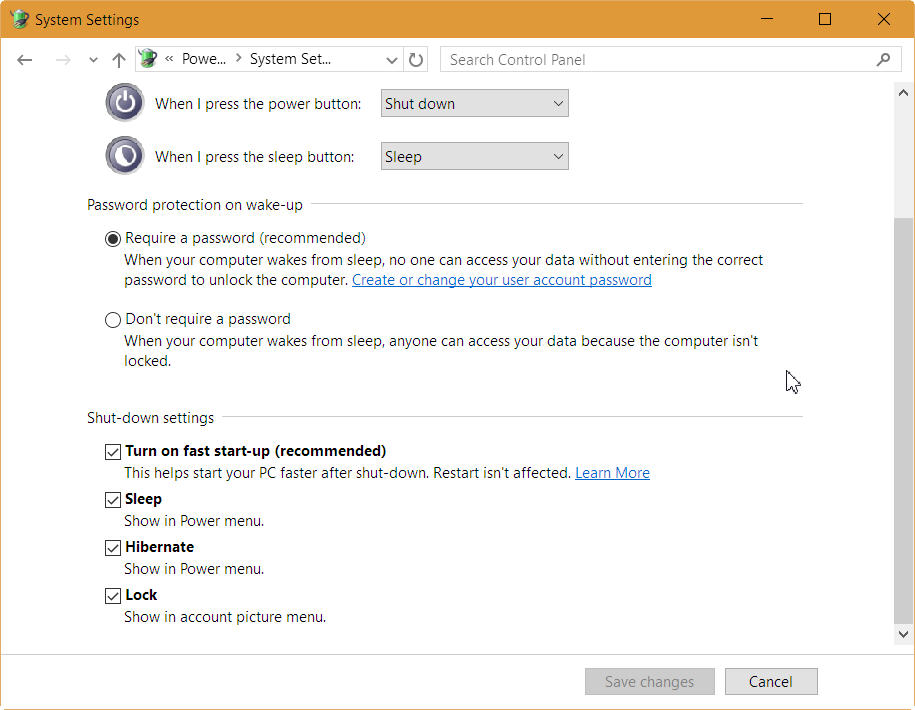
Photo credit: dencg / Shutterstock
-

Happy 30th birthday Windows! What's your earliest memory of Microsoft's revolutionary operating system?
Publié: novembre 20, 2015, 11:37am CET par Wayne Williams
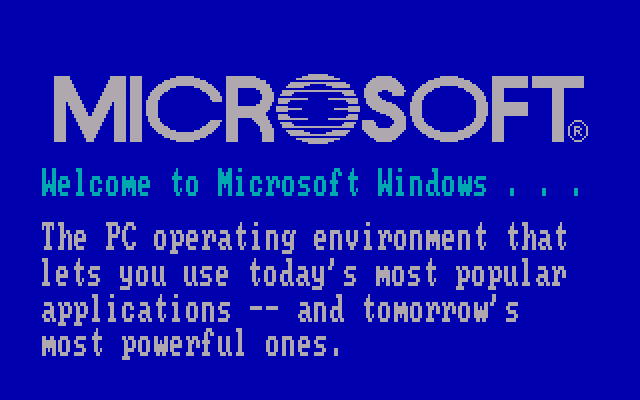
I first started using Windows back in 1992, shortly after the release of Windows 3.1, and I’ve used every iteration since, including both the good (Windows XP, Windows 7) and the bad (Vista, Windows 8). Every time a new version was released, I upgraded pretty much immediately. I might own various Apple devices, and dip into Linux products from time to time, but for me there will only ever be one desktop operating system of worth, and that’s Windows.
Today is a huge milestone for the operating system that popularized home computing, and changed the world in so many ways. Microsoft Windows 1.0 was released on 20th November 1985, two years after it was first announced, and for the first time PC owners were able to control things using a mouse, rather than just typing in commands in DOS.
Windows 1.0 wasn't an operating system, but rather a 16-bit multi-tasking shell that ran on top of MS-DOS, but even so it was revolutionary and opened up the PC's appeal significantly.
In the early days of Microsoft, the company's co-founder and visionary Bill Gates famously talked about wanting to see "a computer on every desk and in every home", and Windows 1.0 was the first real step in making that a dream a reality.
As Microsoft’s A history of Windows says about Windows 1.0:
There are drop-down menus, scroll bars, icons, and dialog boxes that make programs easier to learn and use. You're able to switch among several programs without having to quit and restart each one. Windows 1.0 ships with several programs, including MS‑DOS file management, Paint, Windows Writer, Notepad, Calculator, and a calendar, card file, and clock to help you manage day-to-day activities. There’s even a game -- Reversi.
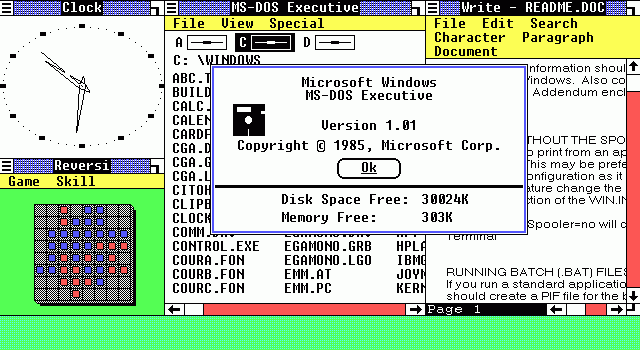
Windows 1.0 sold half a million copies before it was replaced by Windows 2.0 in late 1987, a hugely impressive number back then, and helped by a very attractive price point of just $99.
Windows has changed significantly over the past 30 years, as you would expect -- the Control Panel was introduced in Windows 2.0, the Start menu and taskbar first appeared in Windows 95 -- but you can still see those early origins in today’s OS.
To celebrate Windows hitting its 30th year, we’d like to know what your earliest memory of Windows is.
What was the first version you ever used, and how did you come to use it? Leave your comments below.
-

Anonymous aims to delete the Islamic State 'virus' from the web, and wants your help
Publié: novembre 17, 2015, 10:31pm CET par Wayne Williams

As you might have seen on other news sites over the past few days, hacktivist collective Anonymous has declared war against Islamic State following the massacre in Paris last Friday. The BBC’s Rory Cellan-Jones has an interesting interview with one of the members which is worth reading here.
While Operation Paris -- which has the aim of tracking down members of IS -- is a new venture, Anonymous has actually been engaged in a cyberwar with the terrorist organization since February through its continuing #OpISIS campaign. A new video, posted today by the group behind that operation, Anonymous Red Cult, reiterates its aims, and reveals how you can join the fight.
In the video, Anonymous explains that members of the Islamic State are using social media to communicate with one another, and spread their ideals of terror among the young and impressionable. The aim of #OpISIS is to shut down these channels where possible, and "delete this virus called ISIS from the cyber world".
To date, Red Cult claims to have taken down more than 23,000 Twitter accounts, but more are springing up all the time. This is where you can help.
If you spot pro-Islamic State accounts on Facebook, Twitter or YouTube, you can report them directly to Anonymous' group on Facebook and hopefully get them shut down. (It’s a closed group, so you need to join to gain access).
The full video is below.
Image Credit: t81 / Shutterstock
-

How to download Windows 10 with the November Update and create your own installation media
Publié: novembre 12, 2015, 5:03pm CET par Wayne Williams
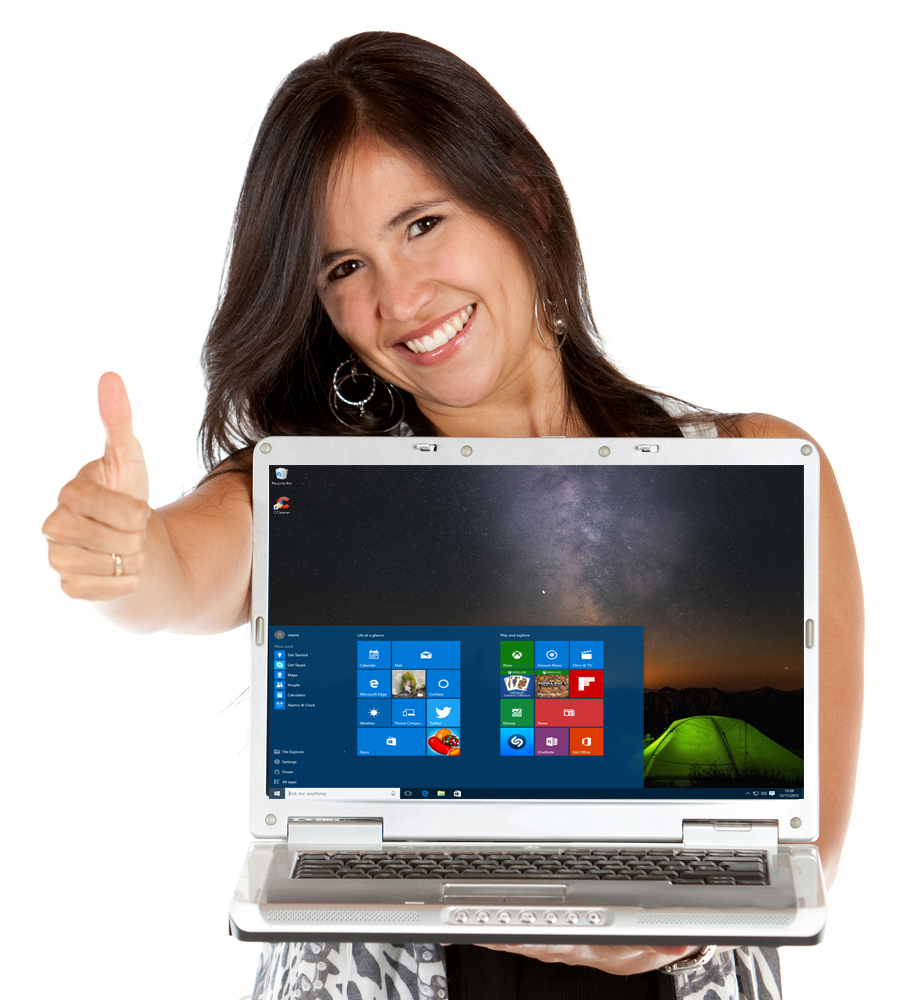
Microsoft pushed out its first major Windows 10 update earlier today, but if you’re not currently seeing it, be patient. These things take a while to make their way to all users.
If you’ve been holding off upgrading a Windows 7 or 8.x PC, waiting for the November Update (aka Threshold 2) to arrive, now is the time to take action. The easiest way to upgrade is by using Microsoft’s free media creation tool which now offers Build 10586 (which is the current version you’ll get after installing the November Update).
To get started, go here, and choose the download tool you need -- there are 32 and 64-bit versions available.
Save and run the file. You’ll be offered two choices. You can upgrade the PC you’re on to Windows 10 or create installation media for another PC.
If you select the latter option, you can choose to write the installation media to either a USB flash drive or ISO file for burning to DVD later.
Windows 10 is several gigabytes in size, so will take a while to complete depending on the speed of your internet connection.
Image Credit: Andresr/Shutterstock
-

Microsoft releases first major update for Windows 10 -- here's what's new (and better)
Publié: novembre 12, 2015, 4:02pm CET par Wayne Williams

Windows 10 users have been eagerly awaiting the arrival of Threshold 2, or the November Update to give it its official name, for a while. Well, today that wait is over. Windows Insiders on the Fast and Slow rings received the update previously in the form of Build 10586, but now it's automatically being pushed to everyone.
This is a huge update, packed with new features, improvements and of course bug fixes. If updates weren't already mandatory I'd be telling you to go update your copy of Windows 10 right now (you can of course hurry things along by going to Settings > Update & Security and clicking/tapping on Check for updates.) With so much to cover, I'll keep the intro here to a minimum and crack on with talking about all the cool new stuff.
Windows 10 Activation
When installing Windows 10, or upgrading an existing operating system, you can now use a Windows 7, 8 or 8.1 key to activate it. Previously, those keys wouldn't work -- your valid Windows license had to be converted into one that worked with Windows 10, and the entitlement was stored in the cloud to allow for a clean install.
Cosmetic and Personalization Changes
Users can now add a fourth column of medium-sized tiles to the Start menu, which is a great new addition. To enable this go to Settings > Personalization > Start and select Show more tiles. There used to be a limit of 512 tiles on Start but that has now been increased to a whopping 2048.
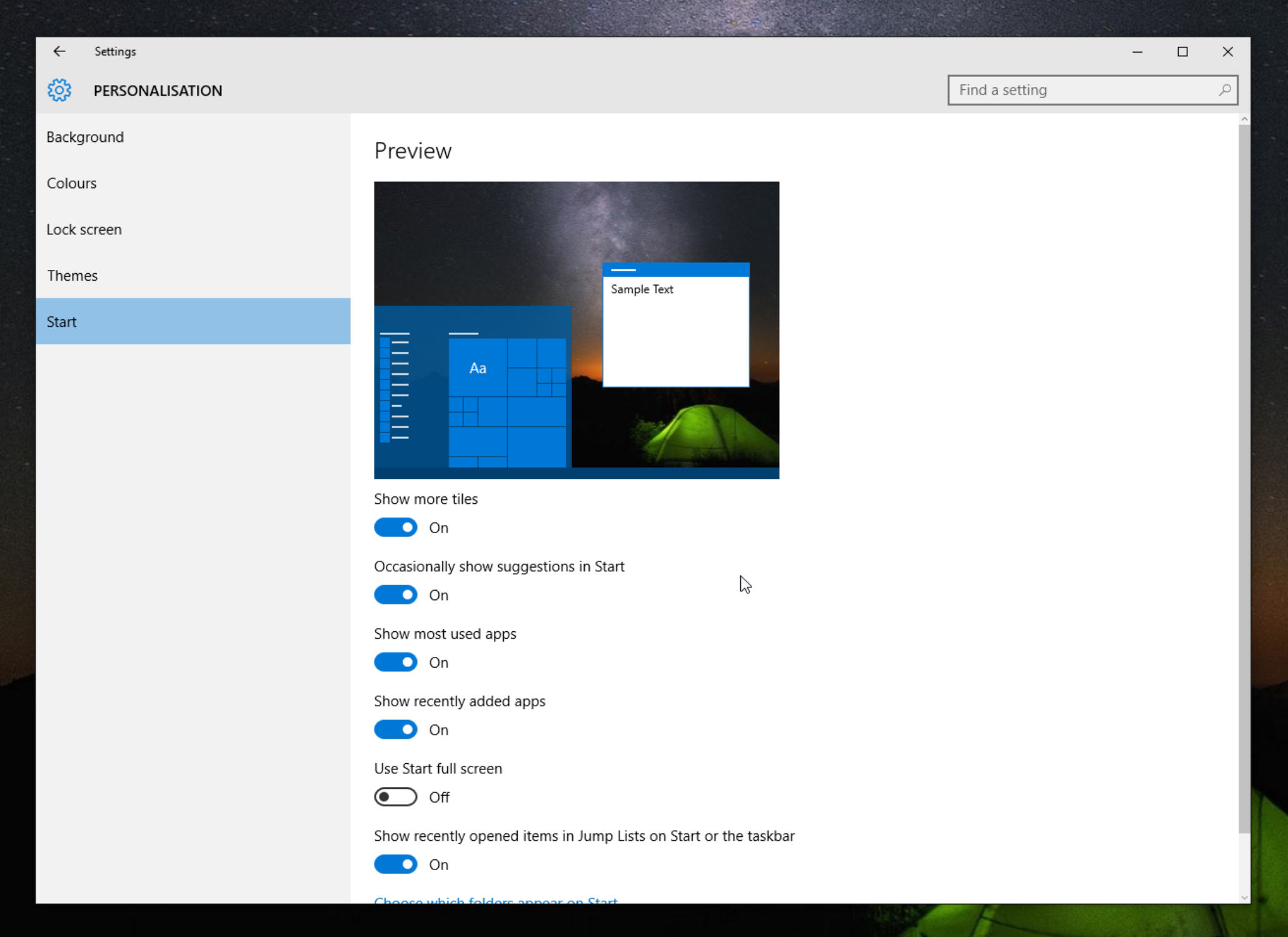
The context menu in Start has changed too. Right-click there and you'll see a nice dark menu. Right-clicking the taskbar also shows a dark context menu, which might fool you into thinking that Microsoft has managed to fix the menu inconsistencies that were to be found throughout Windows 10 originally (there were no fewer than four different context menu styles), but no. Right-click a blank area of the desktop, and you'll see a white menu. Still, we're getting there slowly. Maybe when Redstone (the next big update) arrives there will finally be a unified style throughout. Don't bet on it though.
The update also lets you change the default color scheme for the Start menu and other elements. Go to Settings > Personalization > Colors and turn on the toggle next to Show color on Start, taskbar, action center and title bar. This tweak makes title bars really stand out, and I'm a big fan.
You'll also now see app suggestions in Start, and clicking a recommendation will open it in the Store, ready for you to download. If you're not keen on this idea, you can turn off recommendations by going to Settings > Personalization > Start and toggling Occasionally show suggestions in Start.
Microsoft Edge Improvements
Edge remains very poor when compared to rival browsers such as Firefox and Chrome. There’s still no support for extensions (that’s likely to come in the Redstone update in 2016), which is pretty pathetic, and changing the default search engine and downloads location is still ridiculously difficult, but there are some decent improvements in this update. Performance and security have been improved for starters. You can now cast video, pictures, and audio content from Microsoft Edge to any Miracast and DLNA enabled device on your network, and there’s a new Tab Preview feature which shows a thumbnail of the website when you hover your mouse over an open tab. Favorites and Reading List synchronization has been added, and HTML5 and CSS3 support has been improved.
SEE ALSO: Windows 10's growth is very slow -- Windows 7 and 8.x users reluctant to switch
Cortana Improvements
Cortana can keep better track of leisure activities, reminding you in advance about movies and other events you’ve booked. She is now able to intelligently understand your hand written notes too. Open up a PDF in Microsoft Edge, select some text, and right-click and you’ll be able to ask Cortana to look up information about it. If you have a Windows 10 Phone you'll be able to use Cortana to send a text from your desktop. You'll also see any missed calls.
New, and Improved Apps
Skype messaging, calling and video capabilities are now baked into Windows 10 through the Messaging, Phone and Skype video universal Windows apps. Sway, Microsoft’s new presentation creator, is also included by default.
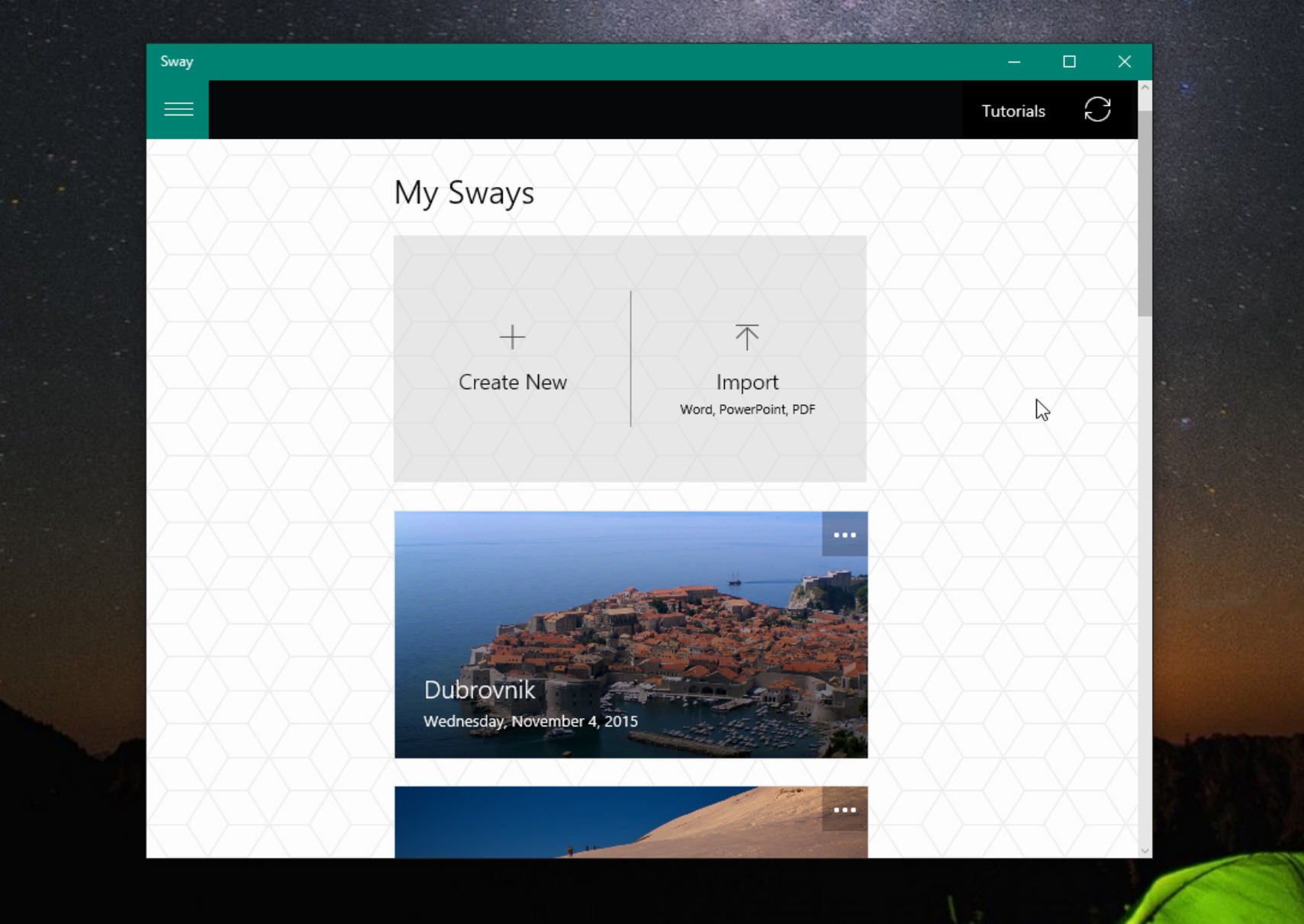
The Xbox app has been updated to make it easier to find and add Facebook friends. You can view friends’ activity in real time, and compare their progress in games. Voiceover recording has been added to the Game DVR recorder. The Photos app now has a folder view, and Groove, Mail and Calendar, Store, and Maps apps have also all been updated. As a side note, new apps and games should download from the Store more reliably now.
Install Apps Elsewhere
If, like me, you don't tend to install programs (or keep personal data) on your system drive, you'll be pleased to hear that Windows 10 now lets you install apps on another drive. Go to Settings > System > Storage and change the location.
Better Memory Management
If your PC starts running out of memory, Windows 10 will now compress unused pages instead of writing them to disk. This reduces the amount of memory used per process, allowing Windows to hold more applications in RAM.
SEE ALSO: Master Windows 10 with these new 'How To' videos from Microsoft
Lock screen improvements
Windows Spotlight uses Bing images to brighten up the lock screen. It was previously only available in Windows 10 Home, but now Pro users have it too. To enable it, go to Settings > Personalization > Lock screen, and select Windows spotlight in the Background drop down box. Find out more here.

That's not the only change to the lock screen. Another setting that was previously only available on Home, 'Get fun facts, tricks and more on your lock screen' is now available in Pro. Toggle it on under Settings > Personalization > Lock screen. This isn't available if Spotlight is activated.
There's a lot of general tweaking that's gone on in the new update. If you don't like Windows 10, then nothing here will change your mind, but if you're already on the new OS, you'll likely appreciate the improvements. There's still a long way to go until it's as polished as it should be, but at least Microsoft is heading in the right direction. Roll on Redstone...
Image Credit: Syda Productions / Shutterstock
-

Shhh! How Ford plans to use noise-canceling headphone technology in its cars
Publié: novembre 11, 2015, 9:21pm CET par Wayne Williams
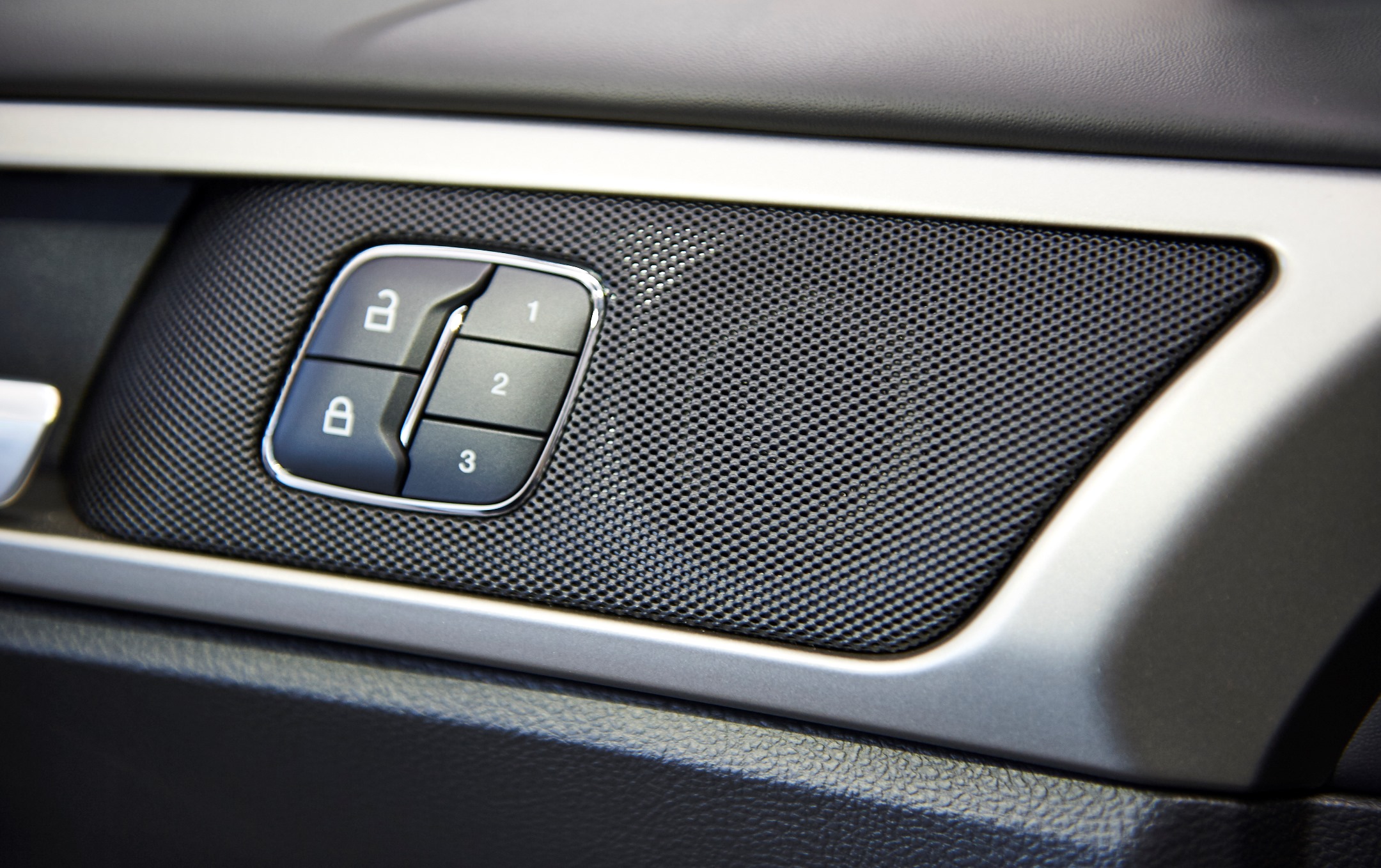
Noise-canceling headphones do a great job of filtering out unwanted background sounds, such as the rumble of traffic or the chatter of crowds. It’s a clever technology, and one that Ford is set to implement in its vehicles, starting with the all-new Ford Mondeo Vignale.
The car giant’s Active Noise Control tech emits sound waves that cancel out engine, transmission, and wind noise, resulting in a much quieter journey. No need to crank up your music to drown out unwanted external sounds.
Three microphones, strategically placed in the interior, detect undesirable noises from the engine and transmission. The technology counteracts these noises with opposing sound waves from the audio system, all without affecting volume levels of music and conversation.
It also records and anticipates driver and vehicle behavior, for example when a driver is accelerating in a lower gear.
'Acoustic glass' in the windscreen and front windows additionally reduces the intrusion of wind noise caused by air flow around the window pillars.
"Whether listening to a favorite playlist, tuning into a much-loved station, or simply enjoying a respite from the demands of modern life, the experience of sound -- and just as importantly silence -- can be a fundamental part of an enjoyable car journey", says Dr Ralf Heinrichs, supervisor, Noise Vibration Harshness, Ford of Europe (fantastic job title!). "All‑new Mondeo Vignale with Active Noise Control offers drivers enhanced levels of comfort, and fewer distractions".
You can find out more about the new technology in this interactive infographic.
-

Apple's Tim Cook calls Microsoft's Surface Book 'Deluded'
Publié: novembre 11, 2015, 6:35pm CET par Wayne Williams
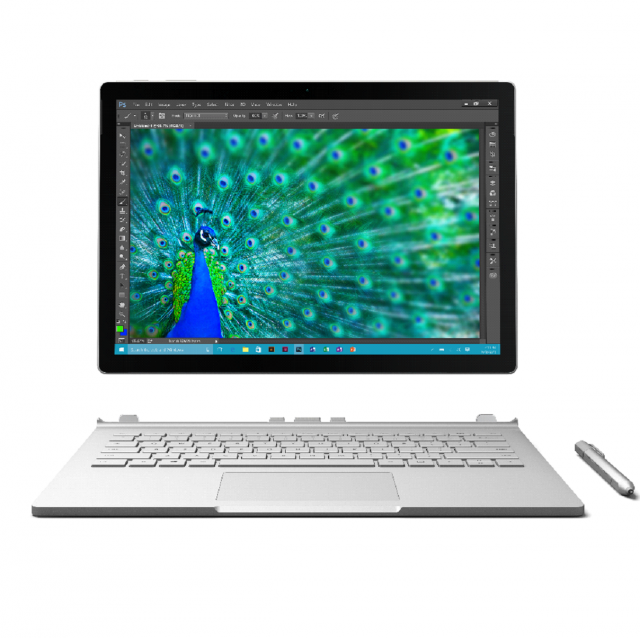
There’s no question that Microsoft’s new Surface Book laptop/tablet hybrid has divided opinion. Some people love it, while others remain unconvinced, especially with regard to the high price and unconventional hinge. It’s very much designed as a rival to the MacBook Pro, and during its launch Microsoft made this clear by declaring its new device to be twice as fast as Apple’s offering.
So is Apple worried about the competition? Not so much. The company’s CEO Tim Cook took a swipe at the device earlier today while talking to students at Trinity College, in Dublin.
"It’s a product that tries too hard to do too much", he said. "It’s trying to be a tablet and a notebook and it really succeeds at being neither. It’s sort of deluded".
(Although the Independent.ie says Tim Cook used the word "Deluded" when describing Surface Book, it's possible he actually said "Diluted", which would make more sense in the context.)
Cook also took the opportunity to push Apple’s newly released iPad Pro, claiming he now only travels with that and an iPhone. But of course.
So what's your view? Is Apple's top man right about the Surface Book? Leave your comments below.
-

Microsoft to offer cloud services from the UK
Publié: novembre 10, 2015, 1:58pm CET par Wayne Williams

At the Future Decoded event, which kicked off today at London’s ExCel Center, Microsoft CEO Satya Nadella took to the stage to talk about his firm’s mobile first, cloud first strategy.
During his speech he announced that Microsoft plans to offer commercial cloud services from the UK. Azure and Office 365 will be available from local data centers in late 2016, followed by Microsoft Dynamics CRM Online shortly afterwards.
The company also announced the completion of the expansion of its data center facilities in Ireland and the Netherlands, which serve as cloud computing hubs for Europe and beyond.
"At Microsoft, our mission is to empower every person and organization on the planet to achieve more", Nadella said. "By expanding our data center regions in the UK, Netherlands and Ireland we aim to give local businesses and organizations of all sizes the transformative technology they need to seize new global growth".
Expanding on the plans, Michel Van der Bel, area vice president and general manager of Microsoft UK, said: "With a cloud adoption rate of 84 percent, the UK is a global leader in embracing the benefits of cloud-based solutions. Our commitment to offer Microsoft Azure, Dynamics CRM Online and Office 365 from local data centers will help meet such demand, especially for those organizations looking for solutions delivered from data centers based in the UK. This will open opportunity for customers and partners alike to innovate, compete and grow their business using the power of the cloud while adhering to strict standards and regulations like those found in banking, financial services and the public sector".
Image Credit: Chaiyapop Bhumiwat / Shutterstock
-

Windows 10 'Redstone' branch showing up for some Windows Insiders
Publié: novembre 10, 2015, 9:52am CET par Wayne Williams
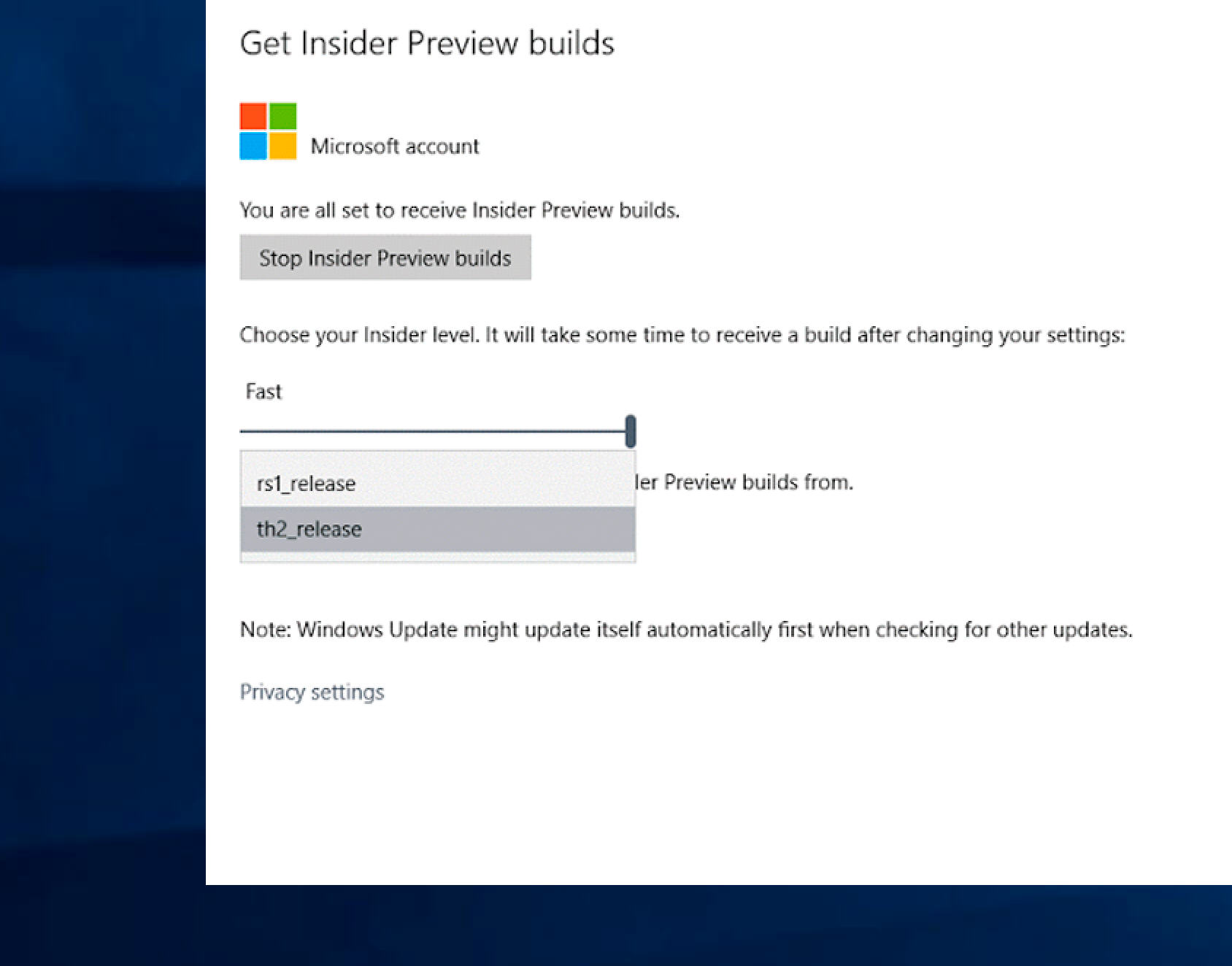
The major Threshold 2 update for Windows 10 was released to Fast ring Insiders last week, and moved on to the Slow ring yesterday in preparation for pushing to all users of the new OS in a couple of days' time.
With that branch of development done and dusted, Microsoft has switched its attention to the next big update, codenamed Redstone. This will bring some much needed improvements to Windows 10 -- including extensions in Microsoft Edge -- when it arrives sometime in 2016.
That Microsoft is working on Redstone is well known, but some Windows Insiders have reported on Twitter that they are being offered the chance to switch between th2_release (Threshold 2) and rs1_release (Redstone).
This option is only available to a very, very small portion of Windows Insiders and you can check to see if that includes you by going to Settings, Update & Security and clicking on Advanced options. If you see a drop down box under the Fast/Slow ring slider you’ll be able to switch to rs1_release.
There’s no benefit to doing so at the moment, obviously, but it’s interesting to see this new branch popping up now.
Let us know if you see the option to switch to rs1_release.
@GabeAul I just noticed that I can now choose between rs1_release and th2_release but what is rs1_release? #WindowsInsiders
— Rob Riley (@rob_riley_73) November 9, 2015
-

TAG Heuer Connected is a $1500 luxury smart watch
Publié: novembre 9, 2015, 6:55pm CET par Wayne Williams
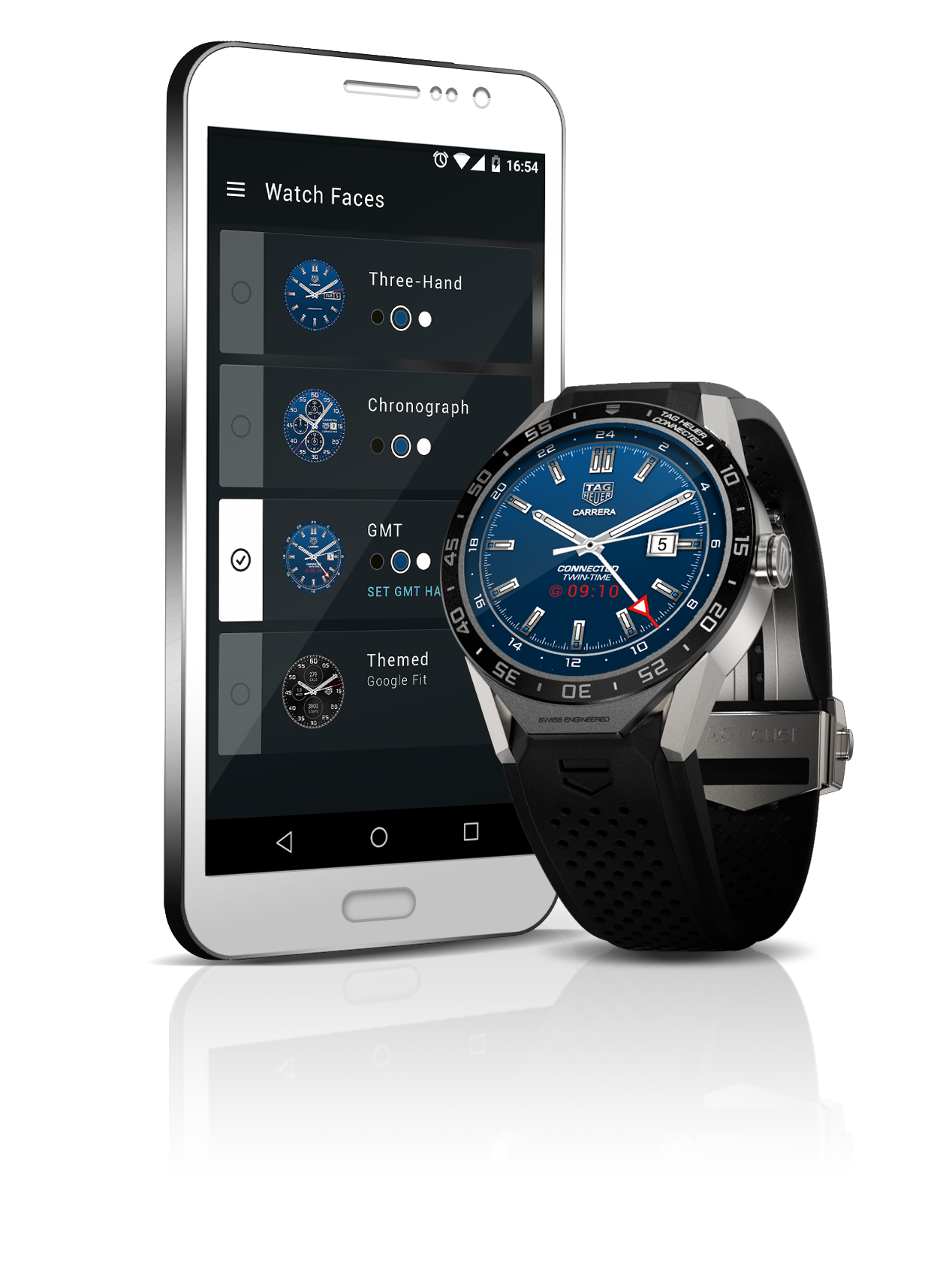
I’ve got to be honest, I don’t get the appeal of "smart" versions of luxury Swiss watches. Buy an analog Rolex, or Omega, and you’ve got a quality timepiece that will last for years, decades even. I have an Omega Seamaster that’s serviced every few years or so which looks exactly how it did the day I bought it, and keeps perfect time. There’s a lot of skilled craftsmanship that goes into making an analog watch, and whipping out those innards and replacing them with a digital interior immediately cheapens the watch for me, and makes it feel like a bit of a knock off.
TAG Heuer Connected, is the first Android Wear powered product from the fabled Swiss watchmaker, and if you’re a fan of TAG Heuer’s stylings, then the Connected has a lot to offer, including a titanium case and signature vulcanized rubber strap in seven striking colors -- green, blue, orange, red, white, black, yellow.
The new watch has a round face and bezel, with a 1.5in 360 x 360 (240ppi) LTPS LCD screen covered in scratch resistant sapphire crystal. The absence of the traditional analog innards means it weighs just 52g.
Inside is a 1.6GHz dual-core processor, 1GB of main memory and 4GB of storage. Connectivity comes in the form of 2.4GHz 802.11 B/G/N Wi-Fi and Bluetooth 4.1 LE.
A 410mAh battery means you can expect up to 25 hours of use on a charge, which is comparable to Apple Watch, and there’s a wireless conductive charger and cradle included.
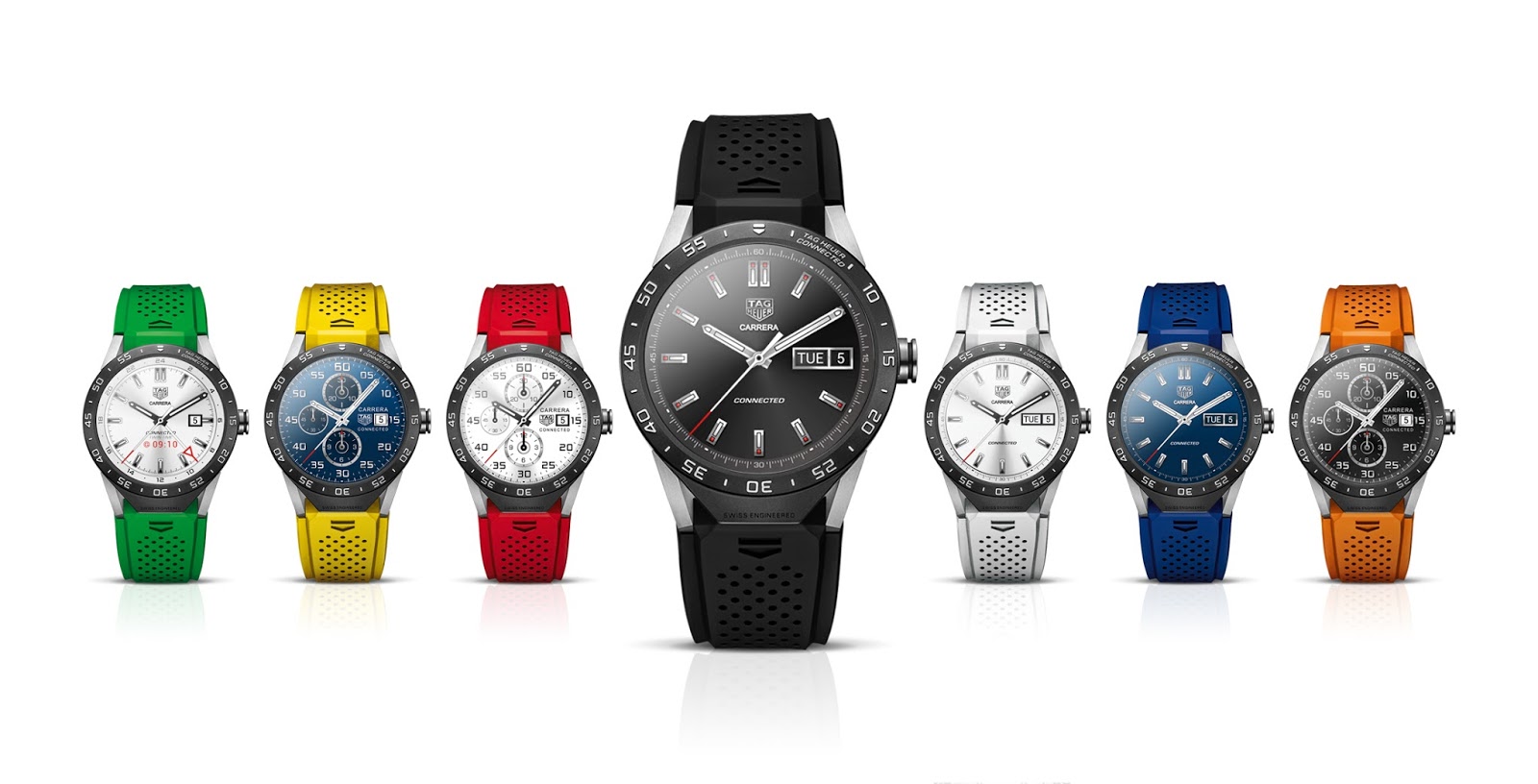
The TAG Heuer name means a high price of course, although the $1,500 asking price is a lot cheaper than you'd expect to pay for one of its dumb (but, for me, superior) analog Carrera counterparts. Interestingly, TAG Heuer will allow buyers to exchange the smart device for a mechanical version after two years. Provided they pay an additional fee.
If you want a quality Android Wear timepiece to rival Apple Watch, and the likes of the Huawei Watch, don’t appeal, then the TAG Heuer Connected might just be the smart watch you’ve been waiting for.
-

Apple's giant iPad Pro goes on sale this week
Publié: novembre 9, 2015, 2:56pm CET par Wayne Williams
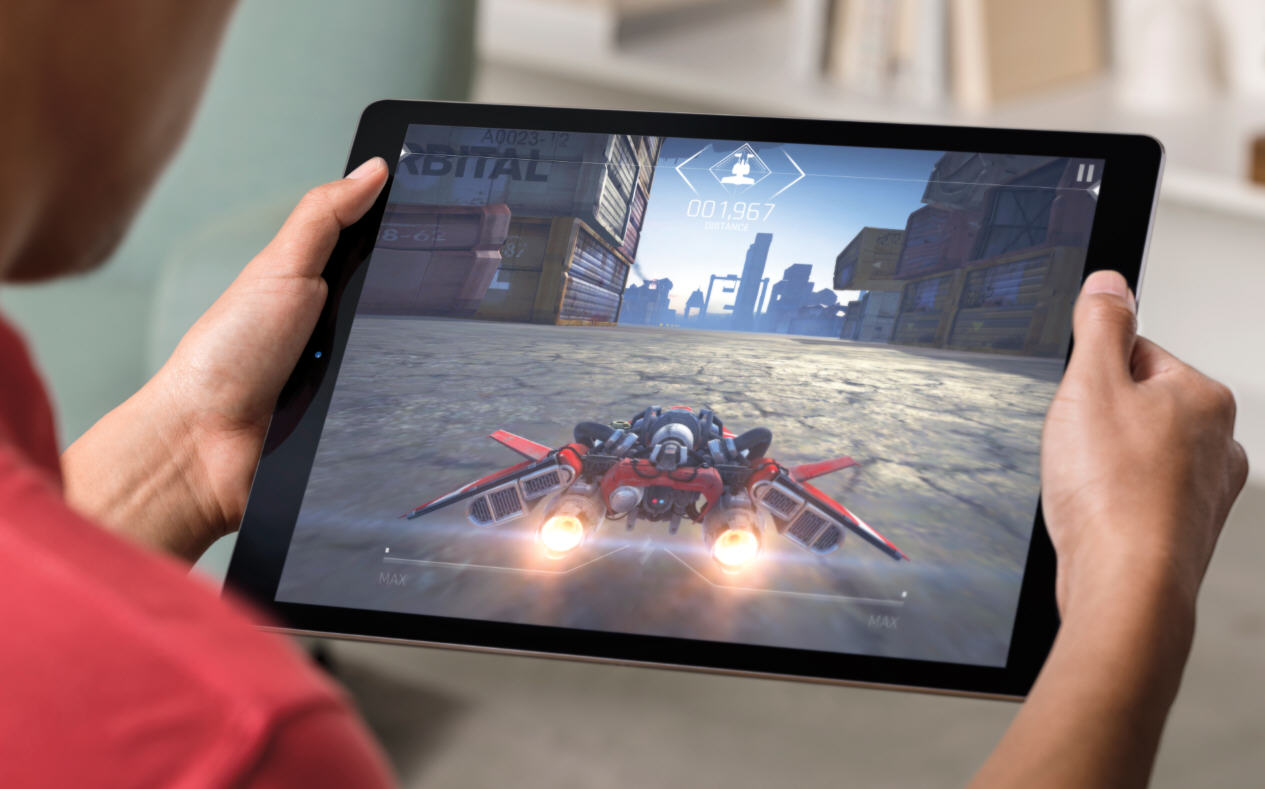
After years of rumors regarding a super-sized tablet, Apple finally took the wraps of its iPad Pro two months ago. The new device has a 12.9 inch screen, with a 2,732 x 2,048 resolution and 5.6 million pixels.
If you’ve been thinking of buying one, the good news is the device will be available to order online from Wednesday and will be in stores later this week.
Available in silver, gold and space gray, the iPad Pro is powered by a 64-bit A9X chip, and promises 10-hour battery life. It weighs 1.57 pounds and is 6.9mm thick (just 0.8 mm thicker than the iPad Air 2).
The iPad Pro features an 8MP pixel front and Facetime rear camera, with four speakers (two at the top and two at the bottom). There’s a Lightning port, a headphone jack, side buttons, TouchID, Bluetooth and Wi-Fi. A cellular model with LTE is also available.
SEE ALSO: You guys realize the iPad Pro will fail, right?
To go with the iPad Pro, there’s a Surface-like Smart Keyboard which doubles as a case, and a stylus called the Apple Pencil. Both go on sale at the same time as the slate itself.
"The early response to iPad Pro from app developers and our customers has been incredible, and we’re excited to get iPad Pro into the hands of customers around the world this week", says Phil Schiller, Apple’s senior vice president of Worldwide Marketing. "iPad Pro is the most powerful iPad we’ve ever made, giving users the ability to be even more creative and more productive with the epic 12.9-inch Retina display, powerful 64-bit A9X chip and groundbreaking Apple Pencil and new Smart Keyboard. We can’t wait to see what they do with iPad Pro".
The 32 GB iPad Pro costs $799, the 128 GB version is $949 and the 128 GB version with Wi-Fi and Cellular is $1079. The keyboard is priced at $169, and the pencil is $99.
Are you likely to buy an iPad Pro?
-

Windows 10 Insider Preview Build 10586 hits the Fast ring -- is this Threshold 2? [Update, yes it is]
Publié: novembre 5, 2015, 7:22pm CET par Wayne Williams

Microsoft is preparing a huge update to Windows 10, codenamed Threshold 2. We don’t know exactly when it will be made available, only that it’s coming this month.
In advance of that update, Microsoft is in the process of rolling out a new Insider Preview build which has all the hallmarks of being a test run of Threshold 2, or the Fall Update, as it’s likely to be known.
Instead of tweaks and new features, build 10586 is all about bug fixes and general improvements. It’s "very fast and smooth, and makes a great daily driver", according to Microsoft’s Gabriel Aul. That’s not something you’d normally hear about a Fast ring release.
So what can you expect to see in this new build? Microsoft shares the following improvements:
- The issue where any audio playing (like music from Groove, or videos from the Movies & TV app) gets reduced by 75 percent for a period of time after a notification pops up from Action Center is fixed.
- Pressing the power button on your Surface Pro 3 should put your Surface Pro 3 to sleep instead of shutting it down.
- We fixed an issue reported by Windows Insiders where a disksnapshot.exe command prompt window would flash randomly.
- Windows should now remember your previous login type. For example, if you log in with a PIN -- it will prompt you for a PIN next time instead of another type.
- We fixed an issue where Tab previews in Microsoft Edge were appearing as black if the page was not scrolled to the top, and web note clippings were also appearing as black.
- Small form-factor devices, like the Dell Venue 8 Pro, that boot with rotation or virtual mode screen size set larger than the physical screen size should no longer experience a bluescreen on upgrade.
- Apps and games should download from the Store more reliably.
There are, naturally, still some known issues. These include:
- After upgrading from one Windows 10 Insider Preview build to another Insider Preview build, Skype messages and contacts will disappear from the Messaging + Skype app. You can get Skype messages and contacts back by navigating to "C:\Users\<USERNAME>\AppData\Local\Packages\Microsoft.Messaging_
8wekyb3d8bbwe\LocalCache" in File Explorer and deleting or renaming the "PrivateTransportId" file. After deleting or renaming that file, go to the Skype video app and sign out of Skype and sign back in. - The Insider Hub might be gone after upgrading to this build. You can get Insider Hub back by going to Settings > System > Apps & features and clicking "Manage optional features", choosing "Add a feature" and selecting Insider Hub.
Update: Although Microsoft only refers to this as Insider Preview Build 10586, its download name "th2_release" gives things away, as does the fact the watermark is removed in this version.
Photo credit: Stanislaw Mikulski / Shutterstock
-

Apply here to test Cortana on iOS
Publié: novembre 4, 2015, 3:59pm CET par Wayne Williams
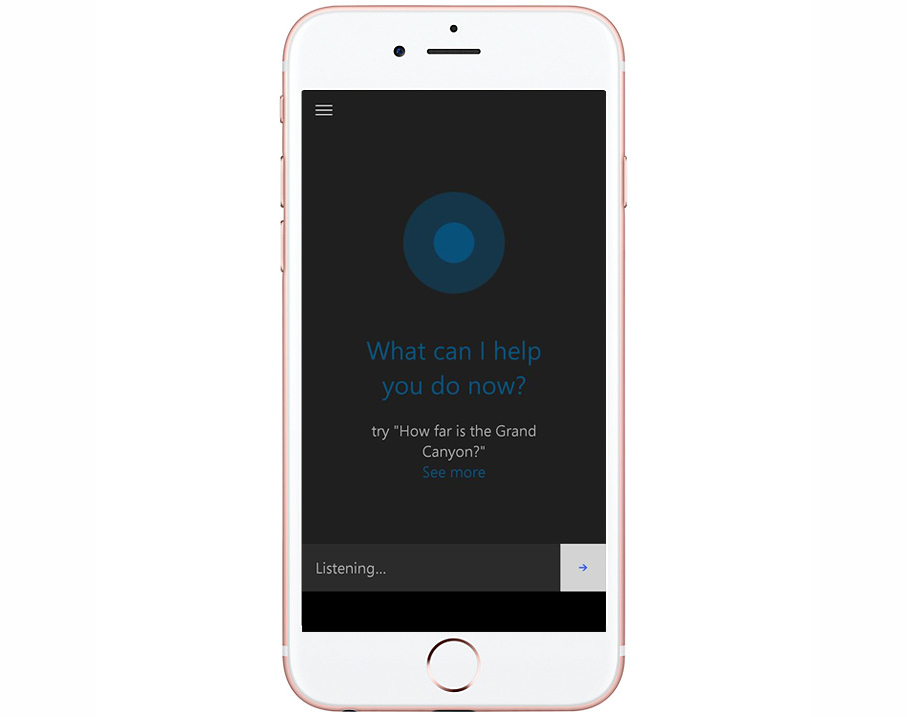
Cortana was originally only available on Windows Phone, but Microsoft’s personal assistant has since become an integral part of Windows 10, and is currently available in public beta form on Android too.
Cortana is set to arrive on iOS at some point in the future, but don’t expect to be able to download the app any time soon -- there’s still quite a lot of development to go. However, that said, Microsoft is currently looking for testers to try out an early version of the iOS app and you can express your interest by filling in a short survey.
SEE ALSO: Everything you need to know about Microsoft's Cortana on iPhone and Android
Potential testers will need to be based in the US, and will be given a beta version to put through its paces. Microsoft says it will "deliver frequent updates to the app to expand the features and functionality".
When it originally announced Cortana on Android and iOS, Microsoft was keen to stress that the apps wouldn’t have quite the same functionality as found on Windows 10. Joe Belfiore corporate vice president, Operating Systems Group at Microsoft explains:
Although the functionality will be very helpful, because it’s "just an app" there will be certain things that Cortana does on Windows phones that won’t work on Android devices or iPhones. Some features require access to the system that aren’t currently possible with iOS or Android, so things like toggling settings or opening apps won’t initially be available in the Cortana companions for those platforms. Similarly, the ability to invoke Cortana hands-free by saying "Hey Cortana" requires special integration with the device’s microphone, so that feature will be limited to Windows Phones and PCs.
In the shout out for beta testers, Microsoft again makes the point:
Cortana's deep integration with Windows means that’s where she can really shine. So, while there are some features you'll use on Windows that we don't (yet) support on iOS phones (like saying "Hey Cortana" to wake her up), we’ve focused on making Cortana on iOS the perfect companion to your Windows experience.
If you’re interested in being considered as a tester for the iOS version of Cortana, all you have to do is click this link, and complete the survey. You’ll need to provide a Microsoft account associated with a Windows Insider Program profile, your Apple ID, information about your iPhone model, and details on how often you use Cortana on Windows 10.
-

Skype introduces a Share button for websites -- will you use it?
Publié: novembre 4, 2015, 1:50pm CET par Wayne Williams
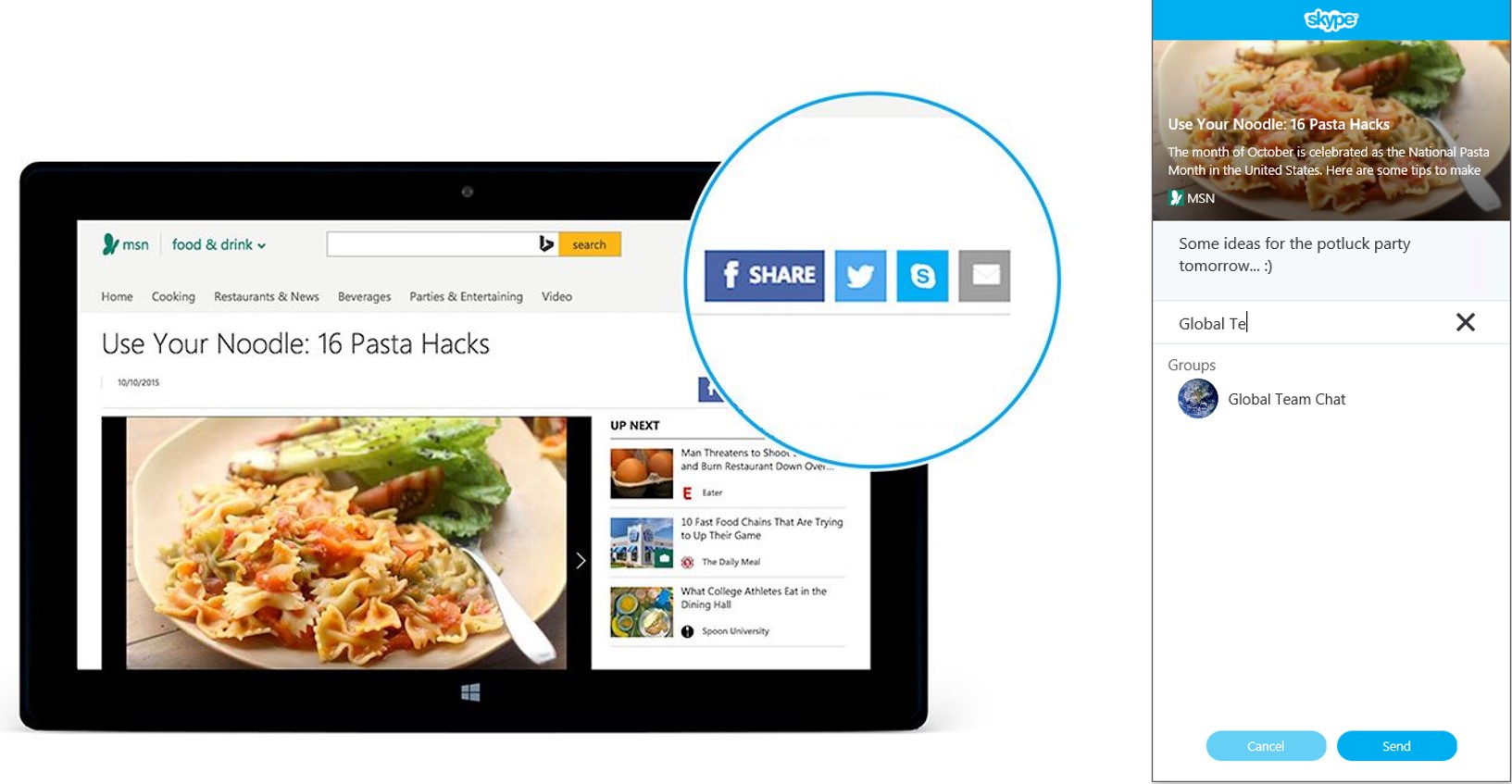
The internet has turned us all into sharers. If you find something interesting online, be it a photograph, video, or an article, there’s a good chance you might share it with people via Facebook, or Twitter.
Microsoft wants Skype to become another way of easily sharing content, and so has introduced a new Share button which will let you quickly forward content on to people you know. "Effortless sharing that sparks richer conversations", as the Skype team describes it.
It works exactly as you’d expect it to. When you encounter something of interest, click on the Skype Share button, sign into your Skype account, choose the friends to share with, and click Send. You can add an optional message.
It’s not all that different from the Share buttons you’ll find across the web -- look at the top of this article and you’ll see buttons for Facebook, LinkedIn, Google+, and Twitter. Microsoft is hoping web developers will add the button to their sites, but to begin, the software giant has introduced it on MSN.com, and sify.com in India.
Do you think you’ll share content in this way? Leave your comments below.
-

How to enable Windows Spotlight in Windows 10
Publié: novembre 2, 2015, 2:36pm CET par Wayne Williams
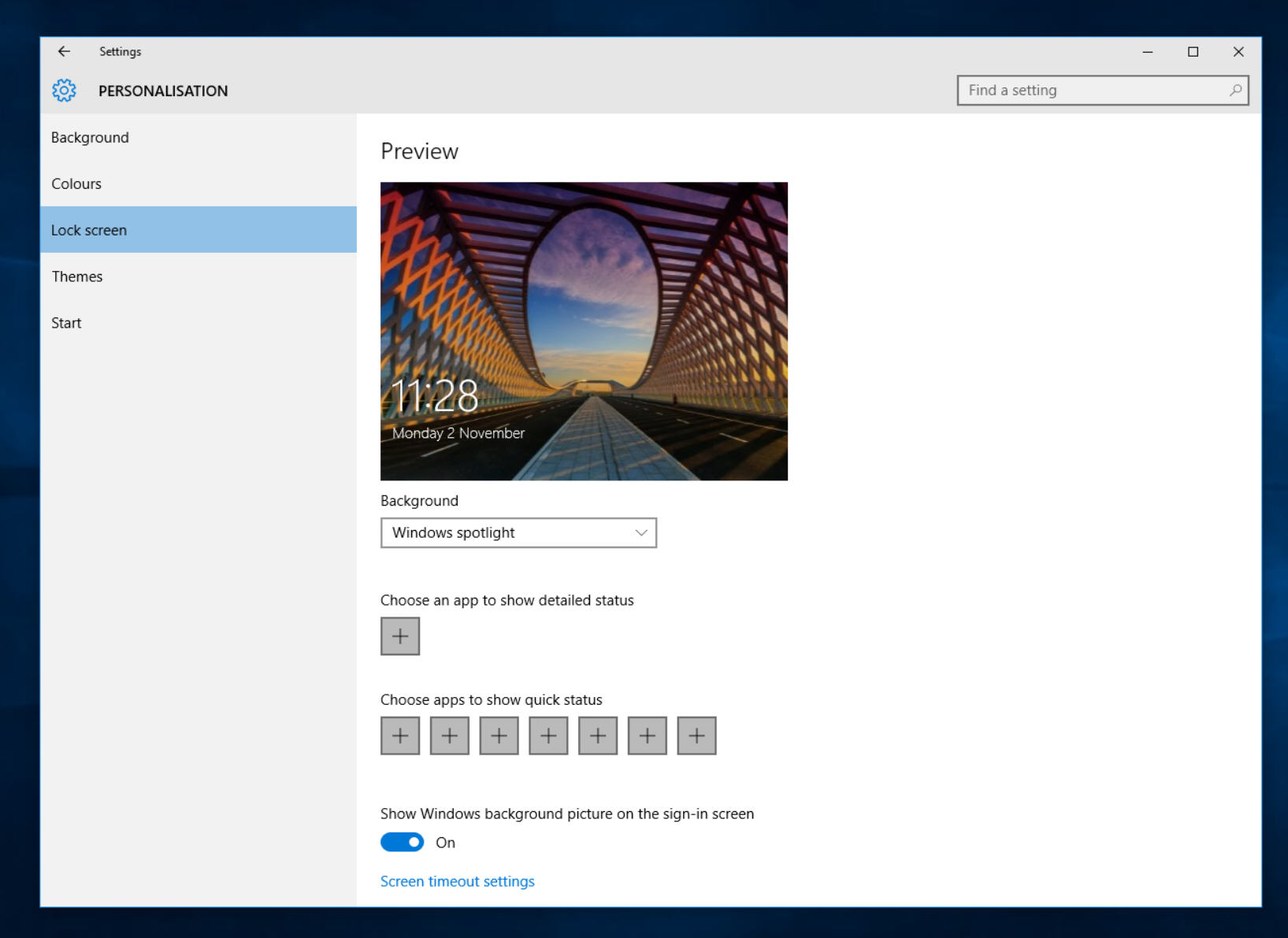
Microsoft’s search engine Bing comes baked into Windows 10 in several ways. It’s the default search choice in Edge and Cortana, and you can even use its image of the day as the wallpaper for your lock screen via the Windows Spotlight feature.
As well as displaying a new image on a regular basis, Windows Spotlight lets you "like" photos which appeal to you. The more pictures you like, the better idea Windows will have of the sort of imagery you want to see, and it will customize the content accordingly.
Windows Spotlight is currently only available in Windows 10 Home, but Windows Insiders running Windows 10 Pro Build 10547 onwards also have it, and it will be available to all in the big November update coming soon.
Spotlight is disabled by default. To enable it, open Settings, click Personalization and select Lock Screen. Select Windows Spotlight in the Background drop down.
Lock the screen by pressing Win+L and you should see a new image from Bing.
At the top of the screen it will say "Like what you see?" Hover over this, and select either "I want more", if you want to keep that image and see more like it, or choose "not a fan" if you'd prefer to see something different.
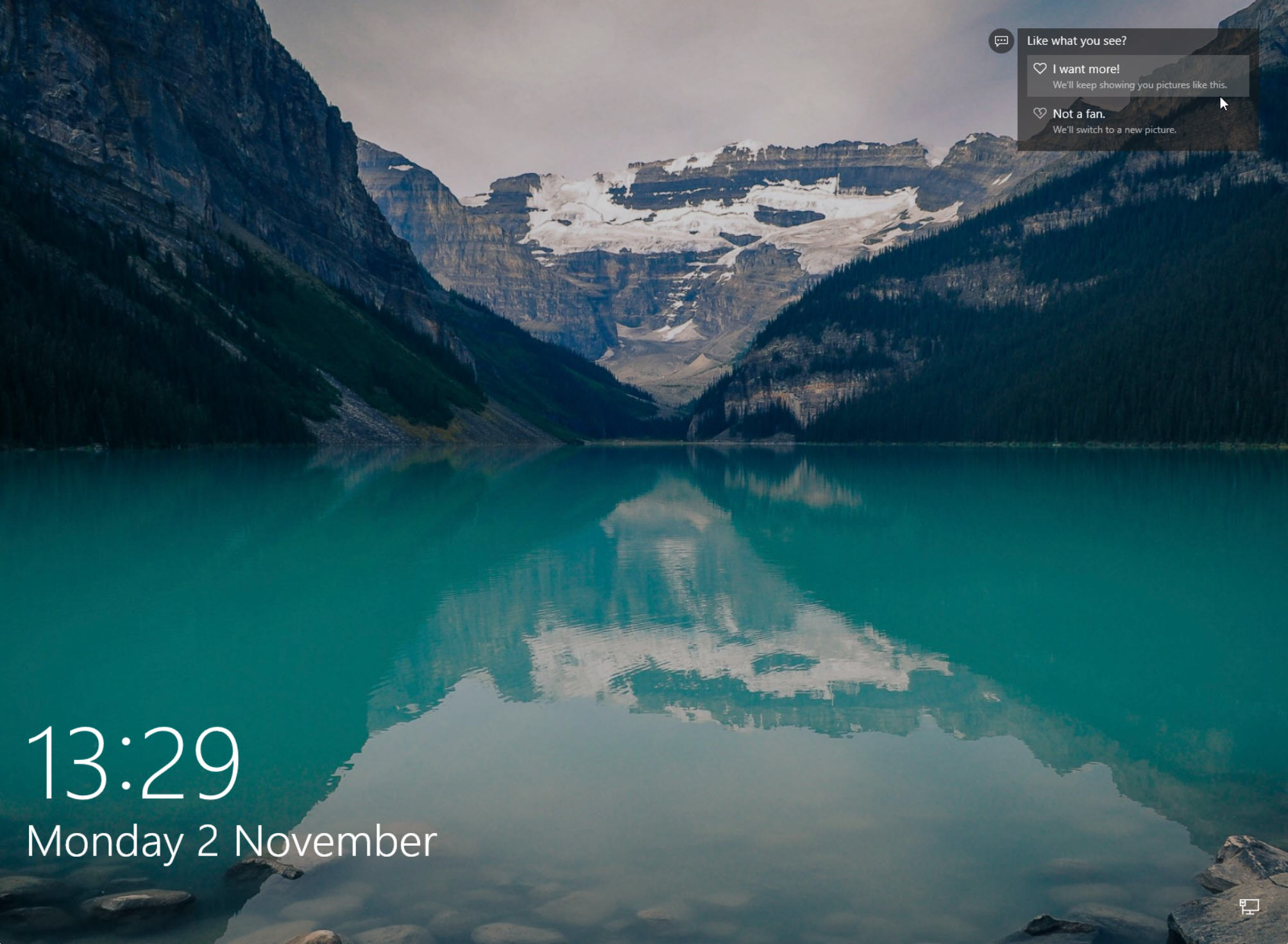
-

Windows 10's growth is very slow -- Windows 7 and 8.x users reluctant to switch
Publié: novembre 1, 2015, 10:17am CET par Wayne Williams

It’s that time of the month again when NetMarketShare releases its desktop operating system usage share figures and we get to see how well (or not) the various flavors of Microsoft’s operating system are doing. In October, Windows 10 gained usage share, while all other versions of Windows lost share. That’s to be expected of course.
However, it’s far from great news for Microsoft as Windows 10’s growth once again slowed. Making the new OS free to upgraders, and advertising it heavily still doesn’t seem enough to get people to make the switch. No wonder Microsoft has started using bullyboy tactics.
SEE ALSO: Windows 10's growth slows dramatically
In October, Windows 10 went from 6.63 percent to 7.94 percent, an increase of 1.31 percentage points. In the previous month it grew by 1.42 percentage points, so you can see the rate slowly tailing off.
Windows 7 remains the undisputed king of operating systems. Last month it started on 56.53 percent and dropped just 0.82 percentage points to 55.71 percent.
You might have expected Windows 8.x users to be the group keenest to switch to Windows 10, but actually they turn out to be surprisingly loyal to the tiled OS.
In September, Windows 8 had 2.6 percent, and Windows 8.1 was on 10.72 percent. In October, those figures didn't change much at all. Windows 8 was on 2.54 percent, and Windows 8.1 on 10.68 percent. In total, Windows 8.x dropped a minuscule 0.10 percentage points in the month.
XP users still show no signs of going anywhere. In October the ancient OS dropped 0.53 percentage points. It currently has 11.68 percent of the market.
While Windows 10 is gaining share, it’s doing so at a very slow rate. What does Microsoft have to do to get people to make the switch? A big update to the new OS is due this month, will that make it more appealing? We shall find out in December.
Photo credit: Rob Hyrons/Shutterstock
-

How well would your city survive a zombie apocalypse?
Publié: octobre 29, 2015, 2:17pm CET par Wayne Williams

If you’re a fan of The Walking Dead you’ve probably, at one time or another, considered how well you’d fare in a zombie apocalypse. Maybe you’d be among the first to be eaten, or maybe you’d go the full Rick Grimes.
Where you live would certainly have a major impact on your ability to survive, and with this in mind, and Halloween fast approaching, CareerBuilder's EMSI (Economic Modeling Specialists Intl.) looked into how well the major US cities would cope in the event of an actual zombie outbreak.
To come to its conclusions, the study used a weighted index ranking the 53 largest US metropolitan areas -- each with at least 1 million residents -- based on occupational skills and industry characteristics. (EMSI analyzes labor market data from more than 90 national, state and local employment resources). The index is scored on eight different factors in four categories:
- Ability to defend against the virus.
- Ability to contain the virus.
- Ability to find a cure.
- Ability to outlast the epidemic with an ample food supply.
A standard, flesh-eating virus transmitted via biting or contact with infected blood is assumed.
Here are the results:
The 10 Metros Most Likely to Survive a Zombie Apocalypse
MSA Defense Score Containment Score Cure Score Food Score Total Score Final Rank Boston, MA 11.52 9.58 20 2.88 43.99 1 Salt Lake City, UT 7.95 18.9 9.2 3.45 39.49 2 Columbus, OH 8.28 6.24 5.50 19.28 39.31 3 Baltimore, MD 17.34 8.5 11.35 2.10 39.29 4 Virginia Beach, VA 22.72 11.04 3.29 1.50 38.55 5 Seattle, WA 8.39 18.32 9.39 1.39 37.49 6 San Diego, CA 14.2 9.33 12.20 1.23 36.96 7 Kansas City, MO 14.87 11.63 4.41 4.12 35.03 8 Denver, CO 6.05 19.47 6.00 3.15 34.66 9 Indianapolis, IN 8.98 8.76 11.59 4.57 33.91 10 The 10 Metros Least Likely to Survive a Zombie Apocalypse
MSA Defense Score Containment Score Cure Score Food Score Total Score Final Rank New York, NY 11.6 -11.17 3.75 1.47 5.64 53 Tampa, FL 4.73 2.49 2.66 1.15 11.03 52 Los Angeles, CA 6.73 0.51 4.32 1.42 12.98 51 Riverside, San Bernardino, CA 4.23 3.4 0.03 5.67 13.34 50 Chicago, IL 9.15 1.3 1.24 4.69 16.38 49 Miami, FL 12.46 0.59 1.66 2.07 16.78 48 Jacksonville, FL 9.61 5.1 1.57 0.92 17.21 47 Milwaukee, WI 5.19 6.44 4.07 2.62 18.31 46 Providence, RI 7.76 3.72 4.05 3.72 19.24 45 Las Vegas, NV 14.83 3.29 0.18 1.11 19.41 44 Category 1: Fighting the Good Fight -- Ability to Defend Against the Virus
To calculate which metros are best equipped to defend themselves against a zombie ambush, CareerBuilder looked at the percentage of each metro’s population in the military, the percentage of each metro’s population in protective services occupations (e.g. law enforcement, firefighting and security); and, to figure out the availability of small arms, the percentage of total exports coming from each metro’s small arms manufacturing industries. The results suggest that Virginia Beach, Norfolk is best prepared to defend itself from a mass zombie attack, thanks to a major naval presence.
Five Cities Best Equipped for Defense Five Cities Worst Equipped for Defense 1.Virgina Beach, VA 53. Grand Rapids, MI 2. Atlanta, GA 52. Detroit, MI 3. Baltimore, MD 51. Portland, OR 4. Washington, D.C. 50. Riverside-San Bernardino, CA 5. Kansas City, MO 49. Cincinnati, OH Category 2: Keeping Zombies Out -- Ability to Contain the Virus
 To calculate which metros are best equipped to keep zombies out, CareerBuilder assessed each metro’s engineering prowess (looking at the percentage of each metro’s population in the civil, electrical, environmental, materials, mechanical, nuclear and engineering technician occupations); construction skills (looking at the percentage of each metro’s population in construction); and population density. (Why population density? The higher a metro’s population density, the faster its contamination rates, and the less time to organize and find a cure.) The results suggest that Denver is best prepared to fend off a zombie purge.
To calculate which metros are best equipped to keep zombies out, CareerBuilder assessed each metro’s engineering prowess (looking at the percentage of each metro’s population in the civil, electrical, environmental, materials, mechanical, nuclear and engineering technician occupations); construction skills (looking at the percentage of each metro’s population in construction); and population density. (Why population density? The higher a metro’s population density, the faster its contamination rates, and the less time to organize and find a cure.) The results suggest that Denver is best prepared to fend off a zombie purge.Five Cities Best Equipped for Containment Five Cities Worst Equipped for Containment 1. Denver, CO 53. New York, NY 2. Houston, TX 52. Los Angeles, CA 3. Salt Lake City, UT 51. Miami, FL 4. Seattle, WA 50. Chicago, IL 5. Detroit, MI 49. Philadelphia, PA Category 3: Race for the Cure -- Ability to Cure the Virus
To calculate which metros are best equipped to find a cure for infection, CareerBuilder scored metros based on their biomedical research and development. It did this by looking at the percentage of each metro’s population in the correlating industries. The results suggest that, with its 24,000 biological and medical scientists and professionals, Boston is most likely to develop a cure for the common zombie infection.
Five Cities Most Likely to Find a Cure Five Cities Lease Likely to Find a Cure 1.Boston, MA 53. Charlotte, NC 2. San Francisco, CA 52. Riverside-San Bernardino, CA 3. San Diego, CA 51. Las Vegas, NV 4. Indianapolis, IN 50. Chicago, IL 5. Baltimore, MD 49. Atlanta, GA 
Category 4: Counting Calories -- Ability to Outlast the Virus with a Good Food Supply
To calculate which metros have the highest supply of food to outlast an impending invasion, CareerBuilder scored metros based on the percentage of each metro’s total exports in non-perishable food manufacturing or wholesale goods industries, including rice milling, breakfast cereal manufacturing, fruit and vegetable canning, roasted nuts and peanut butter manufacturing. The results suggest that Grand Rapids, home base to some of our country’s largest food manufacturers, would have the best edible resources.
Five Cities with the Highest Food Supply Five Cities with the Lowest Food Supply 1. Grand Rapids,MI 53. Washington, D.C. 2. Columbus, OH 52. Tucson, AZ 3. Rochester, NY 51. Austin, TX 4. Memphis, TN 50. San Jose, CA 5. Buffalo, NY 49. New Orleans, LA There's also a cool interactive map available to play around with here.
How well do you think you -- and where you live -- would cope in the event of an actual zombie apocalypse?

All images courtesy of: AMC.com
-

Surface Book and Surface Pro 4 suffering from an ugly flickering screen problem -- but there is a fix
Publié: octobre 27, 2015, 7:24pm CET par Wayne Williams
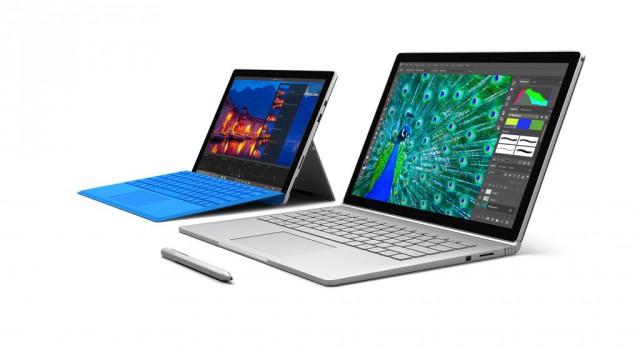
Surface Book went on sale yesterday, and today we’re seeing the first reports of a big problem with Microsoft’s MacBook rival. According to numerous reports, the device is blighted with a nasty intermittent flickering screen issue.
It’s not only the new laptop that has the problem either, it’s affecting the new Surface Pro 4 too -- epileptics beware. You can see the flickering in action below.
While this is a bad bug, and one that makes using either device pretty impossible, it looks as if the problem only affects users who have installed and enabled Hyper-V. Disabling the feature fixes the problem.
To disable Hyper-V, open a Command Prompt and type dism.exe /Online /Disable-Feature:Microsoft-Hyper-V
This is, of course, only a workaround, but Microsoft tells us it is aware of the problem and is working on a fix which will hopefully be issued shortly.
Image Credit: Lance McCarthy
-

Google announces a new ASUS-built OnHub Wi-Fi router with Wave Control
Publié: octobre 27, 2015, 6:38pm CET par Wayne Williams
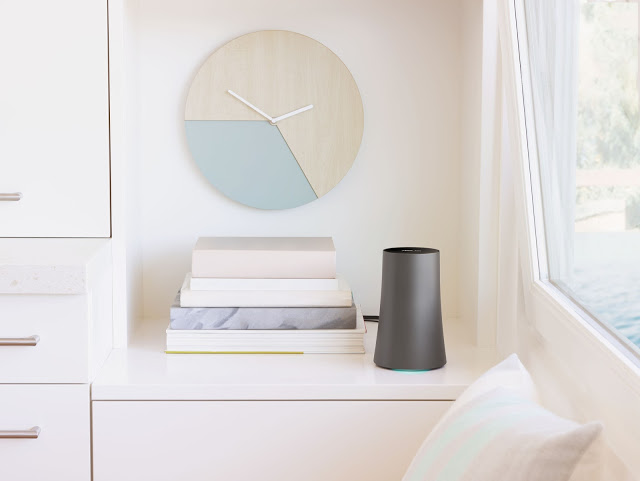
When Google announced its first OnHub wireless router, my colleague Brian Fagioli had one question -- why? The answer, according to Joe Wilcox’s excellent review, is it gives great Wi-Fi and is, in a word, "fantastic". High praise indeed.
The TP-LINK-built OnHub was always intended to be the first in a series of easy to use wireless routers from Google, and today the second device arrives, this time coming from ASUS.
According to Google, "OnHub routers are meant to be displayed proudly, and to get rid of the headaches you usually associate with home Wi-Fi". Quite why you’d want to display your router proudly I’m not sure, but the OnHub devices are quite attractive, even if they look not unlike flower-less vases.
Like the first router, the new OnHub comes with faster Wi-Fi, easy set-up, and simple management via the Google On app.
However, this model also introduces a new feature -- Wave Control. Need to boost the Wi-Fi speed for a particular device? Just wave your hand over the top of the ASUS OnHub and it will happen. Pretty cool.
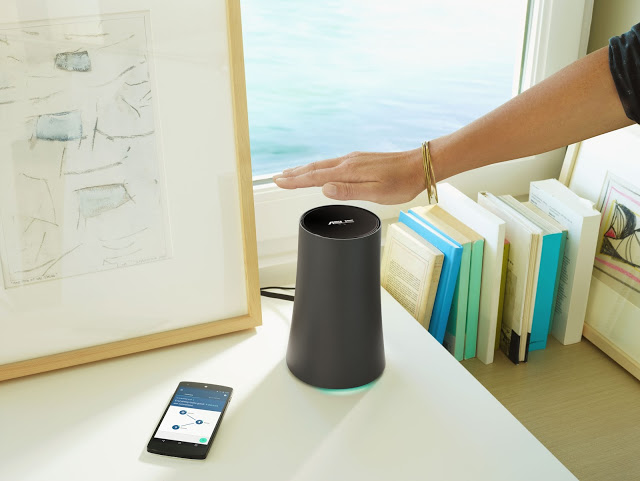
The ASUS OnHub will be available for preorder from select retailers and Google’s website from this week priced at $219.99. It’s currently only available in the US (the TP-LINK OnHub is available in both the US and Canada).
Google also has a software update coming soon which will deliver performance-related improvements and a new smart antenna algorithm. The search giant says: "OnHub will intelligently select the best combination of antennas to direct Wi-Fi to your devices, based on their location and orientation. The best part is, if you already have an OnHub, your router will automatically update when your network is quiet so it won’t interrupt your connection".
-

Surface Pro 4 and Surface Book go on sale today -- will you buy one?
Publié: octobre 26, 2015, 3:22pm CET par Wayne Williams

Surface Pro 4, the latest generation of Microsoft’s popular Windows slate, and Surface Book, the company’s brand new high-end laptop, both go on sale today -- provided you live in the US or Canada. If you live elsewhere you’ll have to wait until November.
Pre-orders have reportedly been brisk, with both devices going in and out of stock. Microsoft says the initial reaction to Surface Book and early pre-order activity has exceeded its expectations, so it’s likely to have limited quantities in store today.
As a refresher, Surface Pro 4 runs Windows 10 Pro and is powered by the new 6th generation Intel Core M, i5, or i7 processors. It’s thinner than its predecessor, and 30 percent faster too. The screen size has increased from 12 inches to 12.3 inches.
Microsoft describes Surface Book as the "ultimate laptop" and says it’s twice as fast as the MacBook Pro. It also runs Windows 10 Pro and can reportedly deliver up to 12 hours of battery life and has a 13.5” PixelSense display with six million pixels. What’s cool is the screen detaches, so it can be used as a tablet.
The device is powered by a 6th Generation Intel Core i5 or i7 processor and features Intel HD graphics, and up to 1TB of storage. Surface Book is also available with discrete NVIDIA GeForce GPU if you require a little more oomph.
There are reasons for and against buying the Surface Book, although of course that’s true of any such device.
Now that both products are officially on sale, we’re interested to know whether you’re planning to buy either of the devices, and if so which.
Please answer our poll, and then leave a comment below telling us why you voted as you did. If you are going to buy either device, please say which model you've opted for.
Note: There is a poll embedded within this post, please visit the site to participate in this post's poll. -

How to fix Windows 10's worst problems -- Part 2
Publié: octobre 23, 2015, 2:15pm CEST par Wayne Williams

Let’s be honest here, Windows 10 was released a little prematurely. There are inconsistencies throughout, Microsoft Edge is an unfinished mess, and then there are the bugs…
Microsoft has been issuing updates on a fairly regular basis to try and fix various problems with the operating system, but we know from the enduring popularity of troubleshooting articles we’ve published previously, that there are plenty of Windows 10 users who are still having problems with the new OS. With that in mind, here are some more solutions to common problems.
SEE ALSO: How to fix Windows 10’s worst problems -- Part 1
Blurry Font Problem
This is an issue I’ve personally experienced. If you change the DPI scaling in Windows 10 to make text, apps and other items easier to read on your Windows device, then you might end up looking at blurry fonts. The best solution is to use a tool to change the scaling method. I wrote about that here.
Fix Windows Update Issues
With Windows 10 updates being mandatory, you kind of need Windows Update to be working at all times. If it’s failing to find updates that you know should be available, or updates are not downloading properly -- and rebooting hasn't fixed the problem -- you can try resetting different Windows Update components, including fixing invalid updates in the Windows registry, deleting temp files, resetting Winsock settings, and so on.
That might sound complicated, and time consuming, but the Reset Windows Update Agent, which you can download from here, simplifies the process. You'll need to run it with elevated privileges.
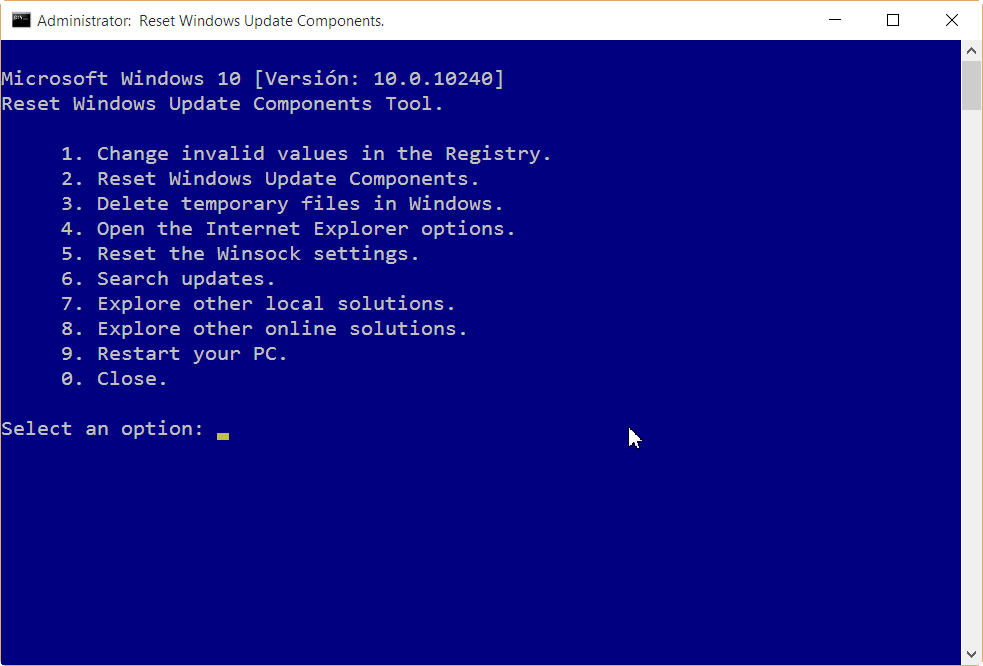
Windows 10 Is Stuck In A Loop Following A Failed Update
One of the most annoying problems found in Windows 10 comes with this message: "We couldn’t complete the updates. Undoing changes. Don’t turn off your computer". If you’re lucky you can boot into Windows, try and fix the problem, and reattempt whatever caused the rollback in the first place. If you’re unlucky, you might find yourself trapped in a reboot loop. We covered a solution here, but here's another idea.
Try to get out of the reboot loop and into Safe Mode. Pressing F8 at bootup might work. Once you’re in Safe Mode, open a Command Prompt as administrator and type net stop wuauserv. Hit enter and then type: net stop bits
Browse to C:\Windows\SoftwareDistribution and delete all of the contents there, then restart your computer.
SEE ALSO: Fix Windows 10 problems with these troubleshooting tools from Microsoft
The Application Was Unable To Start Correctly (0xc0000018)
Encountered this problem with one or more installed applications? If the obvious solutions don’t work (uninstalling/reinstalling the application, updating to the latest version), you should try rebooting your PC repeatedly, to see if that fixes the problem (yes, turning it off and on again may actually work in this case).
If you still get no joy, try launching regedit and navigating to HKEY_LOCAL_MACHINE\SOFTWARE\Wow6432Node\Microsoft\WindowsNT\CurrentVersion\Windows. Find APPINIT_DLLS and delete everything in it, or failing that the entire key. If it’s already empty, go back to the rebooting continually option, or look here for more advice.
Stop Windows 10 Messing Up Your Drivers
Windows 10 forces updates on you, which can be a bit annoying. As well as updating the operating system, it also automatically updates drivers, but that can prove problematic for some users. If you’d rather choose for yourself which drivers are updated, and therefore prevent driver-based problems, follow the instructions here.
You Don’t Have Permission To Save In This Location
Another frustrating problem encountered by lots of Windows 10 users, this tends to crop up when trying to save Office documents. The first (and obvious) thing to do is check the permissions of the folder you’re trying, and failing, to save to.
Right-click the folder in question and select Properties. Switch to the Security tab and click Advanced. Check Replace all child object permission entries with inheritable permission entries from this object at bottom. Click Apply followed by OK.
If that doesn’t work, you can try setting yourself as an Administrator, if you aren’t already. Open the Run box and type netplwiz. Hit enter, and select your user account. Click on Properties. Open the Group Membership tab and make the user an Administrator. Reboot and see if this fixes the issue.
Force Cortana to use Google
This isn’t a "problem" as such, but it is an annoyance, so worth including. Bing is the default search engine in Windows 10, not only in Edge (here’s how to change it there), but also in Cortana. If you’re a fan of Microsoft digital assistant, but not of the software giant’s search engine, you can switch to using Google (or a different search choice), by following the instructions here.
If you've encountered other problems, or have found solutions that readers might find useful, please write about them in the comments below.
Image Credit: alphaspirit / Shutterstock
-

Giveaway: Get 6 months of ransomware protection for free with Bitdefender Internet Security 2016
Publié: octobre 23, 2015, 10:53am CEST par Wayne Williams

Bitdefender Internet Security 2016 was only released recently but it’s already received multiple awards, such as Product of the Year (AV-Comparatives), Editor’s Choice (PC Magazine), and Best Protection for four years straight (AV-Test).
The software usually retails for $51.97, but why pay when you can get it for free?
For the next three days, starting October 23, BetaNews is giving away six-month subscriptions to Bitdefender Internet Security 2016 to protect your devices against ransomware, password stealing, data theft, malware interception of your payments, hidden spying software, and infections that render your device inoperable or cause massive slowdowns.
The suite comes with a number of new features and a range of improvements to fight off modern threats, secure your digital experience and streamline your work.
Bitdefender Internet Security 2016 has a built-in module for ransomware protection. Even if your system becomes infected, the module denies access to your files and brings the encryption process to a grinding halt. You can customize the areas of your file system that you want to protect.
Complex passwords are difficult to memorize, so the new Password Manager now syncs your credentials between the devices that you own.
Bitdefender Internet Security 2016 also comes with a brand-new firewall that offers superior performance in pinpointing intrusions, effectively filtering incoming and outgoing traffic. It supports multiple network profiles (Public, Private, Work) and ensures that your device’s data does not get accessed while connected to public hotspots.
Grab this offer while you can by pointing your browser to the special page here, and enjoy six months' peace of mind.
Note: This is the full version, not some featured limited "special" edition.
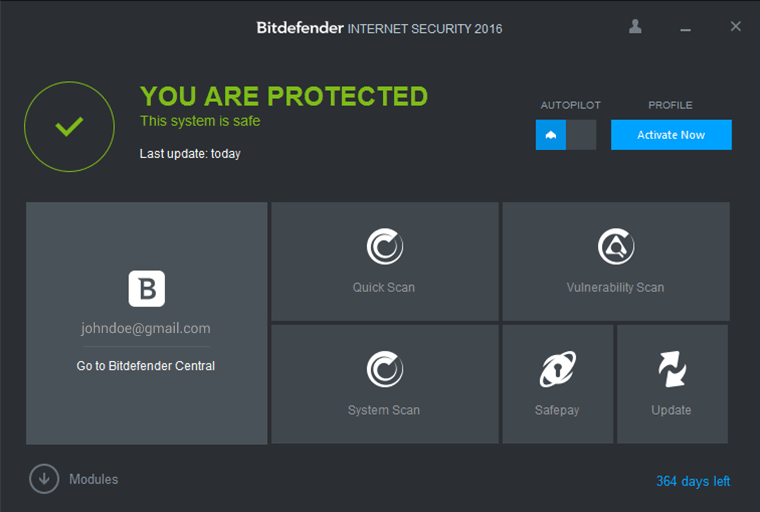
-

How business process outsourcing is evolving to a tech-enabled model driven by robotics [Q&A]
Publié: octobre 22, 2015, 2:09pm CEST par Wayne Williams
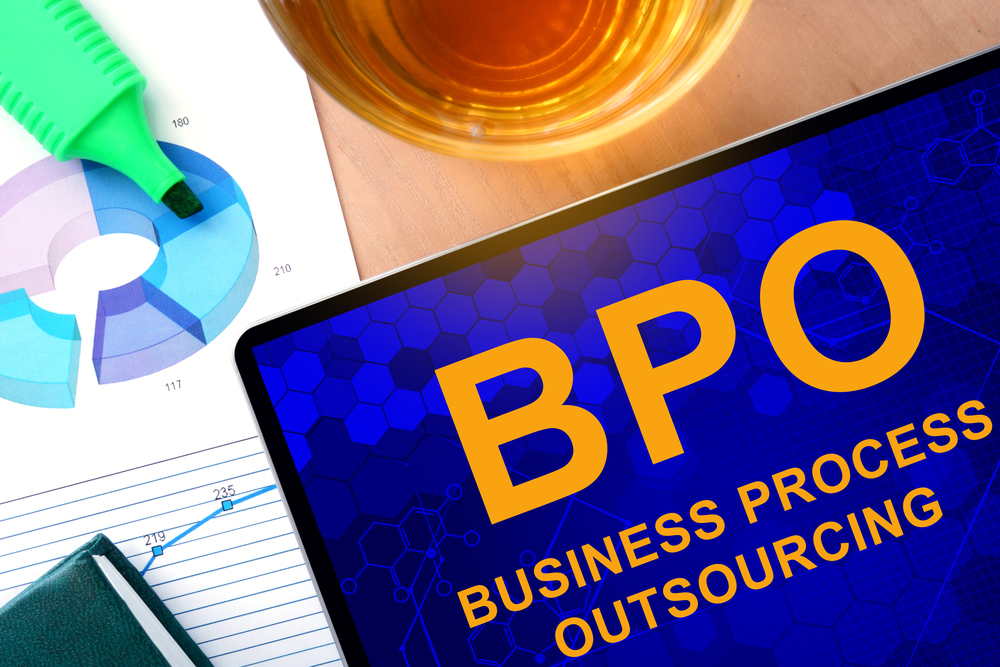
Service-based businesses, like those in healthcare, insurance, commercial real estate and financial services, among others, need to focus on growth and delivering quality customer service. However, back-end financial processes -- from billing and collections to vendor selection and accounting -- are also critical to business health. Firms face challenges in handling these tasks in an efficient, profitable manner. Too often, firms drain internal resources handling activity that doesn’t generate revenue (and in which they don’t specialize). The Business Process Outsourcing (BPO) market combines domain expertise in various fields with the resources and technology capabilities to assess and improve processes.
Xchanging is a business technology and services provider which focuses on delivering technology-enabled process services across finance and accounting, CRM and customer administration, and analytics. I spoke with Sean Allen, Xchanging's Vice President for Business Process Services, about how the BPO market is changing, and the new technology-based elements that are beginning to be incorporated.
BN: How is the BPO market evolving, and what can businesses expect to see from this market in the future?
SA: For years, BPO has enabled cost savings and leaner business management, largely through labor arbitrage (like providing agents to take over the work of firms’ own full-time employees, or FTE). More recently, we’ve seen BPO incorporate technology into this process work -- from analytics and automation to digitization -- and it’s changing the fundamental business-outsourcer relationship. Rather than simply completing tasks more efficiently, businesses now expect BPO partners to provide actionable insights into business strategy. And with this more strategic partnership, we’re seeing more deals move toward a transaction-based model, tied to business outcomes, rather than simply structuring around the volume of outsourced labor.
The bottom line is that BPO providers are more involved as strategic partners than ever before, with technology playing a central role.
BN: In what ways is technology changing the BPO market? Tell me about some of the new technology-based elements of BPO.
SA: BPO providers are incorporating technology into their own operations to deliver more efficient, cost-effective and strategic service. For instance, many now use analytics to better understand transactions they used to simply process, say vendor payment, and identify opportunities for improvement and additional cost savings. Digitization and real-time dashboards also provide businesses with a better picture of their day-to-day performance, directly connected to business goals. More recently, we’ve seen solutions like robotic process automation, or RPA, further streamline business processes through automation.
BN: Define robotic process automation. I’m trying to picture it -- are these metal robots sitting at desks?
SA: RPA is the application of technology that allows employees to configure computer software or a "robot" to capture and interpret existing applications for processing a transaction, manipulating data, triggering responses and communicating with other digital systems. These aren’t robots in the traditional sense, they don’t walk or talk. The term "robotic" emphasizes that they’re more than just enterprise software, though. Think of RPA as a virtual employee, capable of handling structured tasks and administrative work that would take teams of human employees much longer to complete.
BN: What impact is robotic process automation having for BPO providers and, in turn, their customers? Can businesses use it themselves?
SA: When it comes to RPA, BPO providers are driving innovation and passing savings along to businesses. For example, Xchanging used RPA to automate claims processing work for the London insurance market -- a time-consuming, labor intensive process with multiple steps of data validation (a perfect candidate for RPA). The virtual workforce reduced claims processing time from days to hours, cut associated process costs by an average of 30 percent and eliminated the risk of human error, all while providing a 24/7 source of uninterrupted labor.
Businesses may someday explore RPA for themselves, but at this early stage, the time, cost and knowledge barriers are too high. BPO providers, on the other hand, are already trained and accredited in RPA, and can put it into use more cost-effectively.
BN: What’s the best way for a business to engage with a BPO provider? What processes should they be seeking to outsource first, and can RPA be leveraged for all of these processes?
SA: Repeatable processes with structured data, like accounting and financial reporting, are most ripe for outsourcing, especially when you’re looking at automating. Engaging with a BPO provider starts with assessing businesses’ current operations and identifying processes for improvement. In order to leverage RPA, processes must be repeatable and have consistent data. From there, providers will reengineer processes and employee workflow to feed into RPA and ensure seamless operation.
As RPA continues to mature, BPO providers will explore new processes for automation and ways to integrate with analytics and domain knowledge to deliver exponential benefits.
Image Credit: designer491 / Shutterstock
-

Great Scott! Microsoft celebrates Back to the Future day with a cool hidden Easter egg
Publié: octobre 21, 2015, 8:53am CEST par Wayne Williams
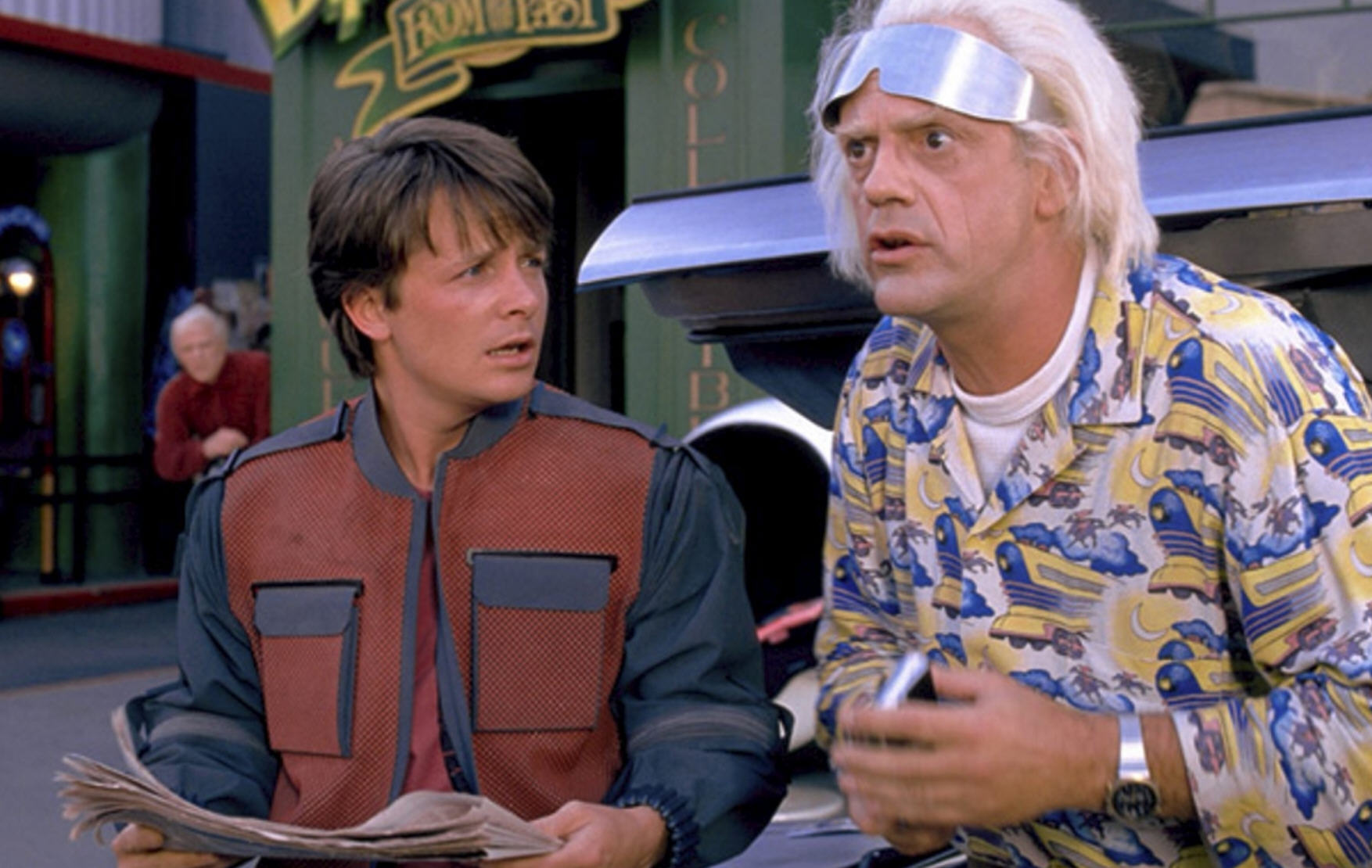
Today, as you’ll no doubt be aware, is the day that Marty McFly travels to in Back to the Future II. We might not have proper (fully working) hover boards, flying cars or pizza hydrators in this version of 2015, but we do have a lot of technology that would have seemed very futuristic to someone visiting from the 1980s.
Microsoft believes that the future is precisely on schedule and is celebrating Back to the Future day with a cool Easter egg on its website. Here’s how to find it.
Firstly go to Microsoft’s site here.
Nothing out of the ordinary to see, right? But type 'Outatime' and enjoy your trip into the future.
If you were a time traveler from 30 years ago, there’s no question that Microsoft Band, Lumia devices, Surface, and Xbox One would seem amazing to you.
And while it’s not yet available, Microsoft’s HoloLens is something both Marty and Doc would definitely appreciate. In fact the Doc appears to be wearing a version of it in the picture at the top of the page...
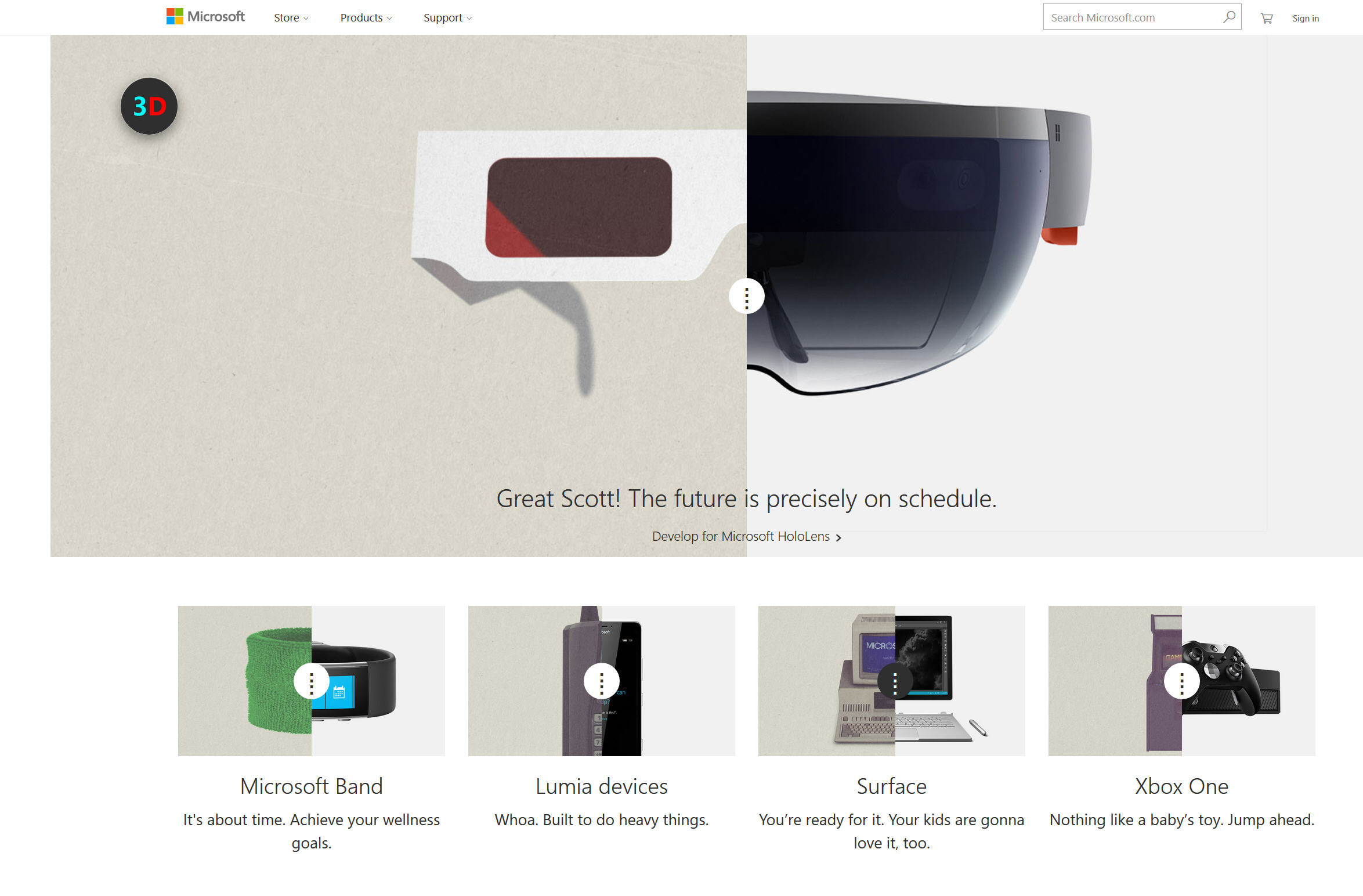
-

Privacy and usability problems with the iPhone 6s? You’re using it wrong
Publié: octobre 19, 2015, 1:06pm CEST par Wayne Williams

Over the past couple of days I’ve read two interesting iPhone 6s stories from my colleagues. Brian Fagioli says Apple’s Live Photos has a big privacy issue, while Joe Wilcox says the way the Nexus 6P’s fingerprint scanner works is superior to that of the Touch ID scanner on the iPhone 6s.
With respect to both writers, they are wrong. The problems they refer to with the iPhone 6s aren’t problems of Apple’s making, they are user errors, pure and simple.
Brian says, with Live Photos there’s the danger of accidentally recording something you shouldn’t. He cites capturing some bank account info without realizing, and later recording a shot of himself semi-naked in the mirror. He took the picture he wanted, then lowered the camera forgetting Live Photos was recording 1.5 seconds before and after the shot.
He says Apple should "Figure out some sort of detection, so that random arm movement is not captured". This is something that’s already being worked on, and should appear in the next iOS 9 update. But let’s be honest here. Use Live Photos correctly, and you won’t record bank details or semi-nude shots.
If you don’t know how to use your phone correctly, learn. It’s not, by any stretch of the imagination, a privacy issue -- big or small. NoBias summed the story up for me in the comments:
"I have discovered a rather big privacy issue in practice"
Correction you discovered how it works.
If you don’t want to record yourself wearing a towel in the mirror, don’t take a photo while standing wearing only a towel in front of the mirror. If you don’t want to record bank details, don’t point your camera at them. You are responsible for what you record with your phone, whether on purpose or by accident. It’s not Apple’s fault if you use a feature incorrectly, it’s your fault.
In the other article, in which Joe Wilcox talks about his preference for Nexus 6P over iPhone 6s Plus, he says this:
[...]the killer function I couldn't part with: the fingerprint reader on the back of the phone. Picking up the device and placing my forefinger on the circular indentation wakes and unlocks the 6P. Wow-way is right! The mechanism beats the Hell out of Apple's two-handed jimmy from the Home button.
This truly has me scratching my head. "Apple's two-handed jimmy from the Home button"? I pick up my iPhone 6s with one hand, and my thumb automatically brushes against the Home button and bam, my phone is unlocked. It’s so fast I never even see notifications anymore.
With a 6s Plus, the unlocking is exactly the same for me (I’ve tried it). I don’t know if Joe is using a finger, rather than a thumb, to unlock the iPhone, or he has incredibly small hands, but either way unlocking the iPhone 6s couldn’t possibly be more intuitive. Certainly I prefer it to tapping a finger round the rear of the phone.
Joe might prefer the Nexus 6P to the iPhone 6s Plus, and that’s his prerogative, but if he can’t unlock Apple’s phone immediately, and one handedly, then he’s obviously doing something weird when he picks it up.
So two Apple stories from colleagues, both very different but with one thing in common -- they talk about issues that really aren’t issues at all, but come down to people not being able to use their phones correctly.
Yes, Apple could make Live Photos more newbie-proof, and move the fingerprint scanner to elsewhere on the phone, but really doing so would be completely unnecessary. Just use the phone as intended, and everything will be good. If you’ve got a problem with how it works, maybe -- just maybe -- the problem isn’t with the phone, it’s with how you’re using it.
Photo Credit: Denis Belyaevskiy/Shutterstock
-

Predictive Analytics and Customer Intelligence: The benefits and challenges facing organizations today [Q&A]
Publié: octobre 16, 2015, 2:45pm CEST par Wayne Williams

The level of accuracy in predictive analytics relies heavily on the quality of data. However, it is often overlooked that the quality of data relies on an organization’s ability to seamlessly integrate with the various systems that collect unique customer data, as well as the ability to analyze the data in context. Predictive analytics can come up short if the data remains in silos across the organization (the web team sees website analytics, loyalty teams see membership levels, marketing team sees email conversions, etc.).
I spoke to Dominik Dahlem, Senior Data Scientist at Boxever -- a customer intelligence and predictive marketing company for airlines and travel retailers -- about the past, present, and future of predictive analytics.
BN: How has predictive analytics evolved over the past decade?
DD: The methodologies and algorithms that go into predictive analytics have actually been around since as early as the 1700s. Over the past decade, much of the popular attention in the analytics field has been on cognitive systems and deep learning. IBM’s Watson brought cognitive systems into the spotlight when it defeated "Jeopardy!" champions and demonstrated that machines can learn, reason and understand natural language. Deep learning marks a new wave of neural networks -- enabled by experts including Hinton, Bengio, LeCun and Schmidhuber and their respective teams among others -- that are able to learn and model high-level abstractions in image, speech, video data and more. Statistical literacy and fundamental programming skills involving data structures and algorithms have improved in recent years due to the proliferating triumvirate of big data, cheap computation and analytics. These developments, along with related advancements in Artificial Intelligence, were integral in enabling actionable insights using tremendous amounts of data.
BN: Can you provide some examples of how companies are leveraging predictive analytics today?
DD: As consumers continue to lead increasingly digital lives, they leave breadcrumbs of data that are waiting to be analyzed across social, health, purchasing, traveling activities and many more. The healthcare industry presents powerful examples for predictive analytics. On the back of Watson, IBM has developed cloud offerings to surface new insights from personal health data to assist clinicians in diagnosing illnesses from medical images and unstructured medical records. On the consumer side, online shops such as Amazon or movie streaming services such as Netflix have dramatically improved the customer experience by providing personalized recommendations.
While the healthcare and retail industries continue to make incredible advancements in how they leverage predictive analytics, many other industries are just now getting started. Typically, for organizations and markets ready to embrace the power of analytics, the first step is to begin layering transactional and behavioral data in order to create extremely smart and contextual customer profiles, which in turn will enable organizations to improve the customer experience through personalization and intelligence-based decisioning.
BN: Many companies have a process for analyzing transactional data. As you mentioned, now we’re starting to hear more about behavioral data. What’s the difference, and what are the benefits of melding transactional and behavioral together?
DD: Transactional data captures the relationship of customers, products and orders through purchasing activities. Traditionally, this information is structured and stored in databases. Based on transactional information alone, we can draw insights into how products are related through co-purchases, how customers are related by viewing their order book and how customer and products are related. Historically, this transactional data is what has been more commonly used to drive promotional marketing, such as targeted email campaigns.
Behavioral data, on the other hand, may be found in Weblogs or in dedicated events tables. Typically, it goes beyond "what happened" to figure out "why it happened". Data analysts refer to this kind of information as unstructured or semi-structured data. Unlike transactional data, unstructured behavioral data is typically text heavy, but may also include other figures such as numbers or dates.
Behavioral data augments transactions in important ways. For example, based on how someone browses through a booking site, travel companies are able to distinguish a family holiday from a business trip or relate searched and booked products. Along with the ability to differentiate searched versus booked products we are able to price convenience, such as how much is a traveler willing to pay for a shorter flight or more convenient flight times. Another example is an online retailer, which can assess which products you’ve viewed online, and offer similar ones down the road. The classification of behavioral data therefore facilitates more targeted in-session personalization, because product offers can be geared towards nuances of the clickstream in real-time.
BN: You mentioned the importance of context. Can you talk more about this and why it matters?
DD: Identifying contextual information is paramount in providing a best-in-class recommendation. Examples of where contextual information becomes important are the ability to differentiate between seasonality of certain flight destinations or cross-sell opportunities of rental cars. A traveler may fly to Tuscany, Italy in the summer months and the Alps for skiing in the winter. Recommendations need to be sensitive to this information. If a travel company knows a traveler is about to book for his summer holidays, the marketing or e-commerce team can simplify the booking process by offering one-click buy travel packages with proposed dates and destinations, based on that consumer’s needs and preferences. Alternatively, travelers who are more adventurous can be offered brand new recommendations while still taking recent searches and their relationships into account. We’ve found that understanding the context of a situation, and layering that into your communications, is one of the most important actions a company can take to increase engagement and conversions.
BN: What are some common challenges that IT teams face when trying to collect and aggregate data from across the organization?
DD: Traditionally, data capture, management and analysis are based on a requirement analysis for each business unit. In the most extreme case, this leads to capturing the same entities in different formats with different identifiers. For example, revenue management may have a different customer identifier and attributes for the same customer than the marketing department, which is collecting similar data for Web-facing interactions. The overlap is not only inefficient, but when it’s not analyzed and integrated, it lowers the amount of customer intelligence organizations have at their disposal. Problems with time zone information often occur as well. If specific information is missing, we often need to infer the concrete date/time, which is error prone, especially during times shifts like daylight saving times. Another example is the challenge of businesses operating in multiple markets that need to support multiple currencies. Ultimately, data integration and business intelligence need currency conversions, which relies on external currency exchange rate tables.
When integrating two or more data sources, identities have to be matched and linked across these sources covering the different business units and an over-arching data schema needs to be defined to unify the attribute naming and capture. Once aggregated, this information must be kept up to date with data capture from each source.
BN: What are some recommendations for overcoming these obstacles?
DD: Unless organizations have a single system that’s collecting and analyzing information company wide, it is often difficult to prevent mismatches. The key to dealing with duplication is documentation. All attributes need to follow a consistent naming scheme, be fully specified with a description that gives the business a reason for having it in the first place, standardized type and format and how missing information is encoded. Standardization of types and formats should ideally follow business guidelines that cut across business units to avoid potential integration issues.
BN: The power of predictive analytics relies heavily on the accuracy of the data being analyzed. How can organizations ensure that the data they collect is clean and accurate?
DD: For businesses that provide critical business insights and analytics, the quality of the data plays a crucial role. Ingesting high-quality data facilitates reliable reporting of business insights. The flip-side to that is that low-quality data has the potential to negatively disrupt business. It’s useful to view complex systems as living systems where emitted data may not be all that clean, and sometimes, even faulty. In order to ensure that data is clean and accurate, the instrumentation points of where data streams are tapped into, formatted and stored need to be carefully reviewed. Any time data is handed over to another sub-system, translation errors can occur. And the more sub-systems data trespasses, the more exposed the data is to potential errors. All steps along the way need to be carefully reviewed in terms of pre and post-conditions on the data as well as potential delays.
BN: What are your top recommendations for marketing and customer experience departments that are looking to get more out of predictive analytics?
DD: Just like any other business domain, the best approach to conducting any analytical task is to understand the decisions that particular functions are dealing with on a day-to-day basis. Working backwards from a high-level business requirement, we can pinpoint the data – and ultimately predictions -- that support the decision-making process. One example might be to run data-driven marketing email campaigns to recommend personalized offers to customers. The big questions are Who, What and When? And how can we add value? Predictive analytics can now provide answers to each of those questions for each customer individually. A deployed solution would run this campaign in a continuous fashion. Take an airline for example: Each day, as the summer holiday season approaches, the campaign would segment a different set of customers that would receive a personalized email based on inferred destination preferences. Along the way, the system could keep track of which customers booked summer destinations to avoid spamming.
Image Credit: klublu / Shutterstock
-

Microsoft releases ISOs of Windows 10 Insider Preview Build 10565
Publié: octobre 15, 2015, 10:43pm CEST par Wayne Williams
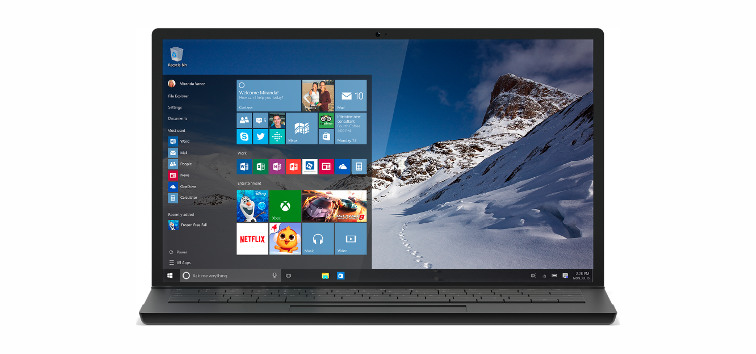
Microsoft pushed out Build 10565 to Windows Insiders on the Fast ring three days ago. This preview includes Skype integration, Microsoft Edge improvements, Cortana enhancements, some new icons, and support for nested virtualization. It also introduces a change to the way the activation process works -- you can now activate Windows 10 using a Windows 7, Windows 8 or Windows 8.1 product key.
New Fast ring preview builds can usually only be obtained through Windows Update, but Microsoft has today taken the unusual step of making Build 10565 available to download as an ISO to allow Windows Insiders to try out the new activation paths.
If you aren’t currently running Windows 10, and want to try out the latest preview build, you can download the required ISO from here.
If you have a spare Windows 7, 8 or 8.1 product key, you can install Windows 10 on any PC, or in a virtualized environment (such as VirtualBox), and use the key to activate the installation.
The ISOs come in x64 and x86 versions and in a wide selection of languages.
-

iPhone 6s users can now share Live Photos as animated GIFs
Publié: octobre 15, 2015, 12:53pm CEST par Wayne Williams
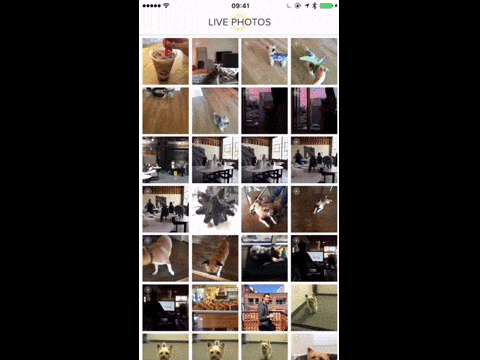
Live Photos is one of the big new features available in Apple’s latest iPhones. As a quick refresher, these are a cross between a photo and a video -- 1.5 seconds of footage is recorded before and after the shot is taken, and when you press down hard on a Live Photo, using 3D Touch, it plays.
There is one big problem with Live Photos though, and that’s while you and other iOS 9 and Mac OS X El Capitan users can enjoy them in all their animated glory, share one with users on other platforms -- Windows or Android, for example -- and all the recipient will see is the standard still image. Where's the fun in that? Thankfully, Live Photos can now be shared as animated GIFs. Here’s how.
What you need to do is download Priime's new Live GIF app from the Apple App Store. This costs $1.99.
Once installed, you can choose the Live Photos you want and save them as a GIF (or MOV file, if you prefer) ready for sharing on Facebook, iMessage, Twitter, Email, Instagram, and more. Live Photos include audio, but obviously the GIF versions don’t.
SEE ALSO: iPhone 6s: Touching the future [Review]
There’s no editing available in the app (yet), but you can trim the GIFs using any other editing apps.
This is the first such Live Photos-to-GIF conversion app, but expect plenty more in the coming weeks and months.
-

USB Killer can fry any computer in seconds -- watch it in action
Publié: octobre 14, 2015, 4:47pm CEST par Wayne Williams
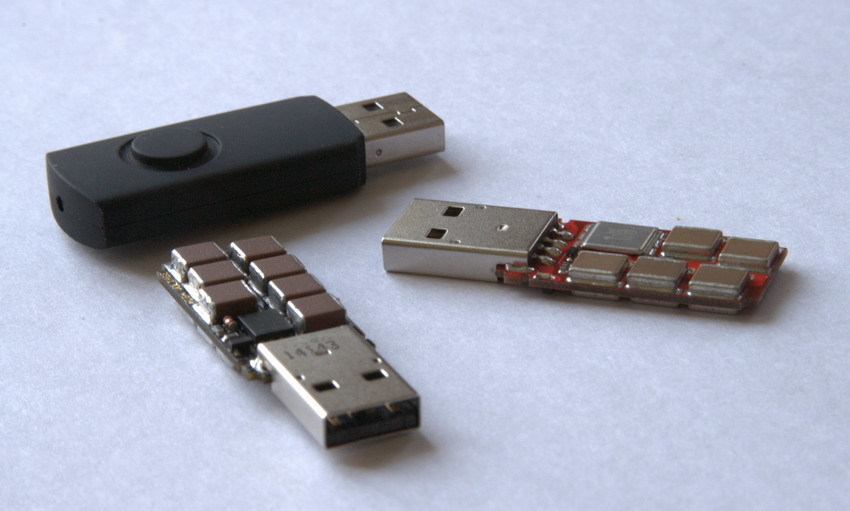
Just as sharing floppy disks in the 1990s carried the risk of infecting your PC with a virus, so sharing USB flash drives carries the same risk today. Fortunately you can easily protect against that kind of threat by disabling autorun and also installing a decent anti-virus program.
However, a Russian security expert has created a new, far more dangerous USB stick, which doesn’t carry a virus, but rather a deadly charge of power which can fry any device with a USB port in a matter of seconds.
USB Killer v2.0 works by drawing a small electrical charge from the host device, and storing it in an internal capacitor. When it reaches 220 volts, the USB stick sends the charge back into the host device, and then starts the process all over again. This power surge, naturally, fries the internal components killing the target device stone dead. Nasty.
USB Killer v2.0’s designer, who goes under the pseudonym of Dark Purple, shared details of his device on a Russian IT and computer science blog called Habrahabr, and even included a terrifying video showing it at work.
Dark Purple points out that while the device can fry a motherboard, the hard disk and data on it is unlikely to be damaged. So that’s okay then.
-

iPhone 6s: Touching the future [Review]
Publié: octobre 13, 2015, 2:30pm CEST par Wayne Williams
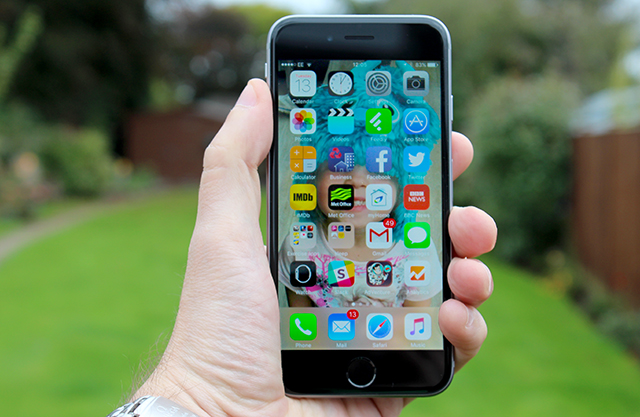
I could have reviewed Apple’s new iPhone as soon as it came out, but I preferred to wait until I’d spent a decent amount of time with the device. My initial thoughts weren’t all that favorable, thanks to a bug that affected the mobile data feature, but Apple thankfully corrected this problem fairly swiftly and that’s the only major fault I’ve encountered to date.
Apple says with the iPhone 6s, "the only thing that's changed is everything", but that’s a bit of an exaggeration seeing as the phone looks pretty much identical to its predecessor, and sports the same 4.7-inch 750x1,334 screen (326 ppi).
But while it looks exactly the same, the new phone is in fact fractionally larger (138.3mm x 67.1 mm x 7.1mm as opposed to 138.1mm x 67mm x 6.9mm) and heavier (143g vs. 129g). These differences are, of course, minimal, which means it will still fit any existing iPhone 6 cases and peripherals you might own. The 6s chassis is stronger too -- it’s made from 7000 series aluminum -- so you don’t have to worry about the device bending.
3D Touch
The big new change with the 6s is the introduction of 3D Touch, a more advanced version of Force Touch found in the Apple Watch and MacBook. This feature can determine how much pressure you’re applying to the screen, providing a whole new way of interacting with the iPhone.
3D Touch can be used in several ways. Press down hard on an icon, and if the app supports 3D Touch (most of Apple’s stock apps do, and Facebook does now as well) some options will appear. The Clock app will let you quickly set an alarm, Calendar will let you add an event, and Camera will let you take a selfie, record a video, record slo-mo, or take a photo. Photos will let you see the most recent snaps or favorites, or perform a search. Phone will let you quickly call a favorite contact, while Messages will let you resume a chat with a friend, or start a new one. A small haptic buzz tells you whenever the press has been registered, which is handy.
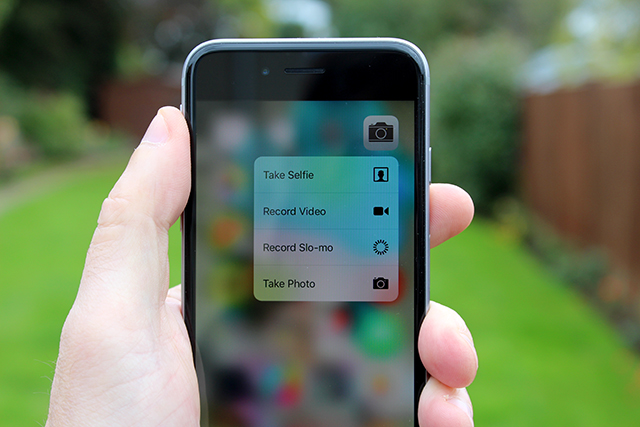
Another 3D Touch feature is Peek and Pop, so called because it lets you "peek" into things -- email being a great example -- without opening it, and interact with it too. Scroll down and you can reply, forward, or mark a message, get a notification or move the message. Press down harder and the pop element comes into play and opens whatever you’ve been peeking into. Peek and Pop generally works very well, although you have to learn not to press down smack bang in the center of the screen as your thumb will obscure some of what you’re peeking at.
Pressing down hard on the left screen edge of the phone brings up the app switch menu, saving you having to double tap on the home button.
3D Touch is definitely a game changer, and it will become more useful once more third-party developers add support to their apps, and find smart and inventive ways to use it. It does take a little while to get into the habit of interacting with your phone in this new way, but the feature soon becomes second nature, and once your brain is fully retrained it’s very hard to go back to using a phone that doesn’t respond to pressure in this way.
Case in point, I’ve found myself pressing down hard on the screen of my iPad Air 2 a lot recently, experiencing minor confusion every time it fails to deliver the expected response.
Camera
The iPhone 6s has a 12-megapixel rear camera, up from its predecessor’s 8-megapixels, and it’s able to cope better with a variety of different lighting situations, including low-light. The pictures it takes are unquestionably better (as well as simply bigger) than those produced by previous iPhones. The one downside of the iPhone 6s’ photographic capabilities is that it’s lacking optical image stabilization. As was the case with the iPhone 6, this is only available in the Plus-sized sibling.

On the front of the 6s is a 5-megapixel iSight camera which wouldn’t really be something to get excited about normally, except for the fact that when taking a photo the 6s will analyze the light and then use the phone’s entire screen as a subtle flash, changing its color as required to deliver good lighting and avoid any nasty color casts. I always blink whenever a flash goes off, so this is the perfect solution for me -- I can take selfies in a dark room and have my eyes open in every one. That’s the real magic as far as I’m concerned.
Live Photos are another new inclusion. These are a cross between a photo and a video. 1.5 seconds of footage is recorded before and after the photo, so you get a sense of what’s happening in the picture. Harry Potter would definitely approve. When you flick through the images in the Photos app you get a split second of action, so you can tell when you’re looking at a Live Photo. This is quite amusing at times -- it’s like watching a photograph play a game of Statues. Press down hard on a Live Photo and the full clip will play, complete with recorded audio.
Like 3D Touch you have to train yourself to use it properly. Initially many of your Live Photos will consist of you raising and lowering the camera at the start and end of the picture.
Only you and other iOS 9 and Mac OS X El Capitan users can enjoy the benefit of Live Photos -- share a picture with anyone not on an Apple platform and they’ll only see a plain, static shot.
It’s a nice gimmick, and I have some fun Live Photos on my phone -- including a few absolute classics -- but mostly I don’t bother with it now. Live Photos are roughly double the size of regular photos and my camera roll takes up enough space on my device as it is. Still it’s easy enough to toggle the Live Photos feature on for those occasions when a still photo won’t truly capture a moment, and a video would be overkill.
The iPhone 6s’s camera is also capable of recording 4K video. This feature is, sensibly, disabled by default, and if you didn’t know it existed you might never use it as it’s not something you can turn on in the Camera app. You need to go into Settings, Photo & Camera, Record Video and select 4K at 30 fps there.
If you have a 4K TV (or monitor), then being able to record 4K video to watch on it is a welcome inclusion. The iPhone 6s doesn’t have a 4K screen so you can’t watch recorded clips at that resolution on it, and videos are around six times the size as regular HD ones, so it’s probably not a resolution you’ll want to record at all of the time anyway.
Battery Life
There’s been a lot of discussion about the iPhone 6’s battery life as the device has a smaller battery than its predecessor and also it’s reported that some phones have shorter battery life than others because there are two different versions of the A9 processor -- one made by Samsung and the other by TSMC. Reportedly, phones with the latter processor run cooler and so result in up to two hours more battery life.
Personally I have no complaints about the battery at all. Whereas with my old iPhone 5s I would run out of juice in the early evening (starting from a full charge first thing), I can now go a full day without coming close to running out.
My iPhone 6s has a TSMC A9 processor (you can find out which processor yours has by following these instructions) so the better battery life, but I doubt if you have a Samsung A9 processor you’d notice too much difference in the real world.
The introduction of a Low Power Mode in iOS 9 is a great inclusion, and can shut down non-essential functions when battery life drops below 20 percent. I’ve not had to use this much, but when I have I’ve found it certainly does prolong battery life by a noticeable degree.
The Screen
While the iPhone’s 750p resolution is decent, it doesn’t compare with the quality of screens offered by rival phones. The Samsung Galaxy S6, for example, has a 1440 x 2560 screen with a ~577 ppi pixel density. That said, the 6s’s screen is sharp, and the color incredibly vibrant. Blacks do look a little too gray for my tastes, but that’s about the only gripe I have. If you compare the iPhone 6s’s screen with that of the Galaxy S6, then Apple’s device does come off poorer, but if you don’t compare the two devices -- and few people will -- then it’s unlikely you’ll be disappointed by the iPhone’s screen.
Performance
The updated processor and additional RAM mean the 6s is pretty nippy across the board, and even the most resource hungry games run buttery smooth. It all feels so snappy. The Touch ID sensor has been upgraded in the 6s, which means the phone unlocks the second you place a finger or thumb on it. This makes paying with Apple Pay quicker too.
iOS 9
iOS 9 is a definite improvement, with Siri Suggestions (contacts and apps she’ll thinks you’ll like are shown on the far left screen, along with top news stories) a welcome inclusion. Siri no longer needs to be summoned with a button press. Just say "Hey Siri" and she’s ready to handle your query. I’ve found I’m using her to open apps and play music a lot more than before as a result.
I love the new notifications bar which now shows things like the battery life of not only your phone but that of an Apple Watch (if you own one) and connected Bluetooth headsets. A small, but fantastic addition. The screen also shows the weather forecast, calendar, and details from other widgets.
Verdict
The iPhone 6s is a superb phone. It’s just the right size for me (I really couldn’t cope with the likes of the 6s Plus), and 3D Touch has huge potential. It’s not an essential feature just yet, but it likely will be once more developers embrace it. I’d have liked a better screen, and longer battery life, but the truth is I really don’t have any complaints with either. If you have an iPhone 6 you really don’t need to bother upgrading -- it’s a step forward rather than a giant leap -- but if you have an older iPhone, an Android device or a Windows Phone, then you really should consider it.
-

Windows 10 Insider Preview Build 10565 arrives on the Fast ring, includes Skype integration, Edge improvements
Publié: octobre 13, 2015, 9:35am CEST par Wayne Williams
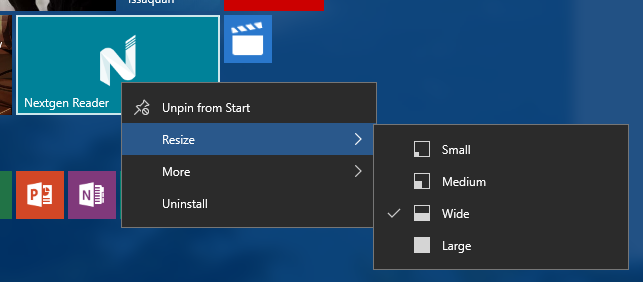
If you’re a Windows Insider on the Fast ring, Microsoft has a new Windows 10 preview build for you try. Build 10565 has quite a lot of changes and new features, including integrated Skype messaging, calling and video, tab preview in Microsoft Edge, some new icons, and Cortana enhancements.
There are also improved context menus on Start, more vibrant title bars, and the ability to sync favorites and reading list items in Edge. A lot of annoying problems have been fixed in this build too.
The Skype integration is of course the big new addition. The inclusion comes through Messaging, Phone and Skype video Windows apps, and Microsoft warns that as this is an early preview you can expect "some bugs", so be warned.
Tab preview shows a glimpse of what’s on a website when you hover your mouse over an open tab, and the Cortana changes include reminders for movie and event bookings and being able to intelligently understand hand written notes.
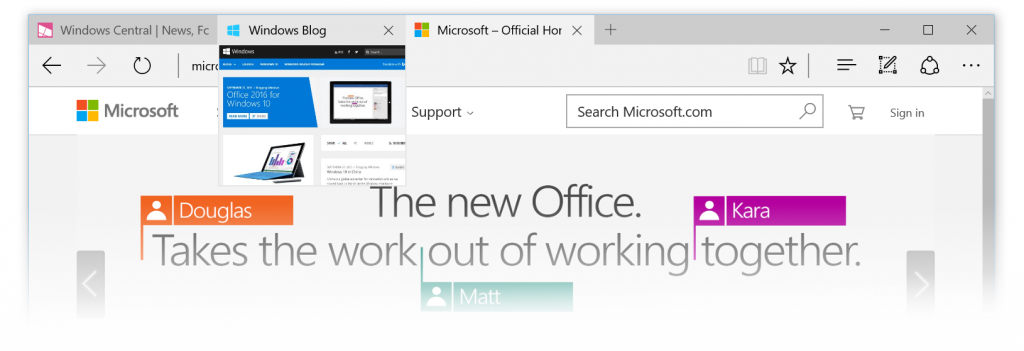
You can read the full list of changes and bug fixes here.
Naturally, with this being a Fast ring release, there are some known issues to be aware of:
- The search box does not work if you are in a locale where Cortana is not available. Microsoft is currently investigating workarounds.
- The Xbox app for Windows 10 will consume gigabytes of memory on your PC if you have any Win32 games (non -Windows Store games) installed on your PC that have been identified as games or added by you in the Xbox app. Closing the Xbox app will release your PC’s memory.
- WebM and VP9 have been temporarily removed from the flight builds. Microsoft will continue to develop a VP9 implementation that it intends to ship in Windows. Expect VP9 to return soon in a future release.
- Small form-factor devices, like the Dell Venue 8 Pro, that boot with rotation or virtual mode screen size set larger than the physical screen size will experience a bluescreen on upgrade and will roll back to the previous build.
The new build is available to Fast ring insiders now, except those in Russia and Turkey. If you live in either of those countries you'll have to wait a few more days for the build to make its way to you.
-

How to find out if your iPhone 6s has a 'good' or a 'bad' chip
Publié: octobre 12, 2015, 1:10pm CEST par Wayne Williams
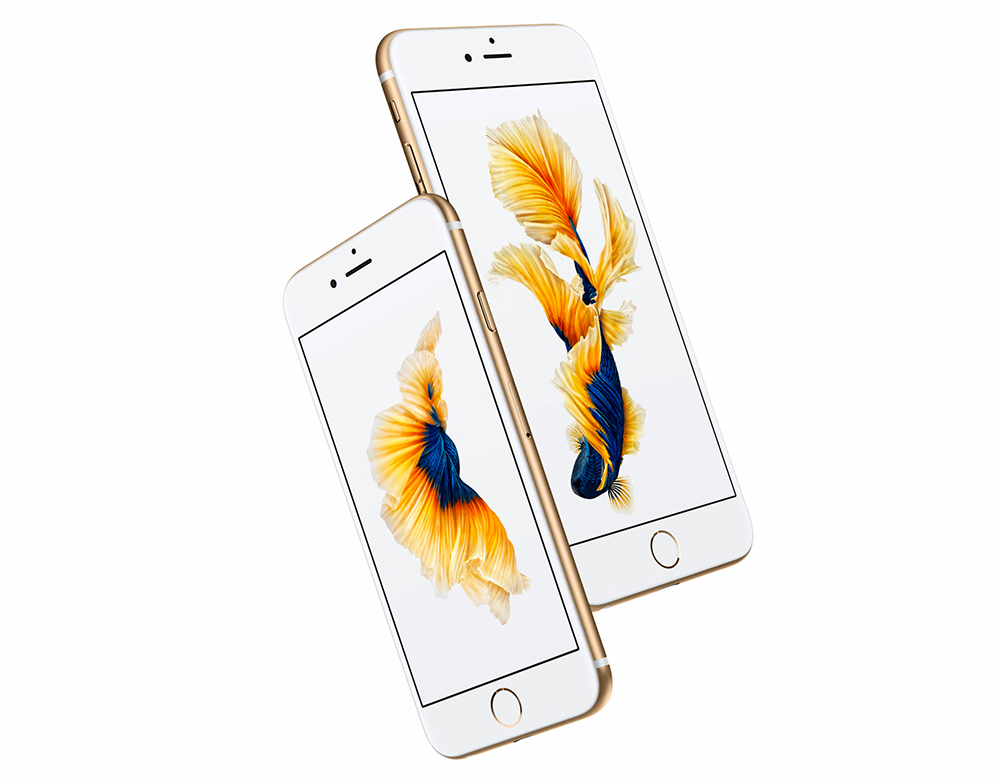
As you may have read, there are two different versions of the A9 processor powering Apple’s new iPhone 6s and 6s Plus. One chip is made by Samsung (fractionally smaller), and the other by TSMC.
Apple says there’s no real difference between the processors (it used two different manufacturers to avoid supply issues), but it’s reported that devices with the TSMC processor run cooler and can give users up to 2 hours of additional battery life. There’s no way of knowing which processor your iPhone has simply by looking at it, but there is a simple trick you can use to find out what’s inside.
All you need to do is install the free Lirum Device Info Lite app, and look at the model number at the bottom of the main page.
If you see N71AP (6s) or N66AP (6s Plus), it means your phone has the Samsung chip (and therefore you might experience slightly reduced battery life).
If on the other hand you see N71MAP or N66MAP it means you have the TSMC processor.
Apple says that it really doesn’t matter which chip your new iPhone has. Responding to the battery life claims, the tech giant said in a statement:
Certain manufactured lab tests which run the processors with a continuous heavy workload until the battery depletes are not representative of real-world usage, since they spend an unrealistic amount of time at the highest CPU performance state. It’s a misleading way to measure real-world battery life. Our testing and customer data show the actual battery life of the iPhone 6s and iPhone 6s Plus, even taking into account variable component differences, vary within just 2-3 percent of each other.
My iPhone 6s has the TSMC processor inside, and I’ve certainly no complaints about battery life. If you have a new iPhone 6s or 6s Plus, which A9 chip does it have? What’s the battery life like?
-

Panic over: iOS adblockers fail to trigger the 'adblockolypse'
Publié: octobre 9, 2015, 2:46pm CEST par Wayne Williams
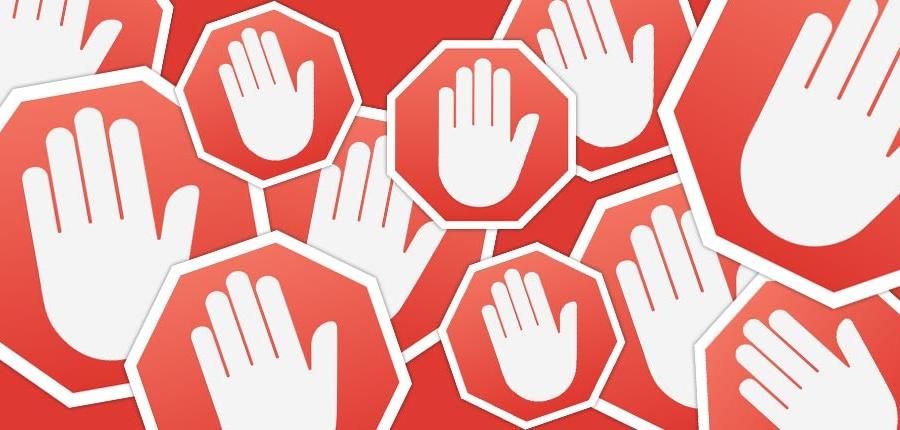
For a company that doesn’t rely on advertising to make its money, Apple was never going to lose anything by allowing adblockers into the App Store unlike, say, Google.
Still, the recent move has certainly proved divisive. On one hand, websites that rely on advertising to survive have been bracing themselves for a loss of revenue, while many iPhone users have welcomed the change. Web pages reportedly load quicker in Safari without adverts, and if you’re on a capped mobile data plan you’ll benefit from the savings created by not downloading ads. The big question was always whether the move would impact advertisers in any meaningful way, and the early indications are that it has certainly made a difference, although it’s far from the "adblockolypse" many predicted.
Mobile app tracking company AppsFlyer has been looking into what impact ad blocking apps have actually had since they were first allowed into the App Store. To do this the company examined nearly 100 million clicks on iOS Safari in the first two weeks after the release of iOS 9 on September 16, when such apps first became available.
After normalizing the data based on the adoption rate figures of iOS 9 -- as provided by MixPanel -- the company found was that there was a 19 percent drop in the number of clicks on Safari in the first two weeks after the launch of iOS 9.
To put that drop into perspective, for the total ecosystem AppsFlyer discovered that just 14 percent of all iOS clicks, and less than 3 percent of all mobile clicks, come from Safari users (Apple’s web browser currently has a 25 percent market share of mobile browsers). The in-app environment, where iOS users do most of their clicking, hasn’t been affected at all by the change.
So while a 19 percent drop in clicks is certainly worth noting, it isn’t really all that major in the grand scheme of things.
Summing up the findings, AppsFlyer’s Ran Avrahamy says the company doesn’t "expect mobile advertisers will be significantly affected by ad blocking software. For those advertisers that conduct their own media buying, they’ll simply have to seek out more in-app opportunities or consider shifting some dollars to Android. For ad networks that were heavily reliant on mobile web sites for their inventory, they’ll have to make sure their networks consist of plenty of apps, Chrome-optimized mobile web sites and Android publishers".
-

Microsoft unveils Surface Pro 4, but will you want it?
Publié: octobre 6, 2015, 6:50pm CEST par Wayne Williams
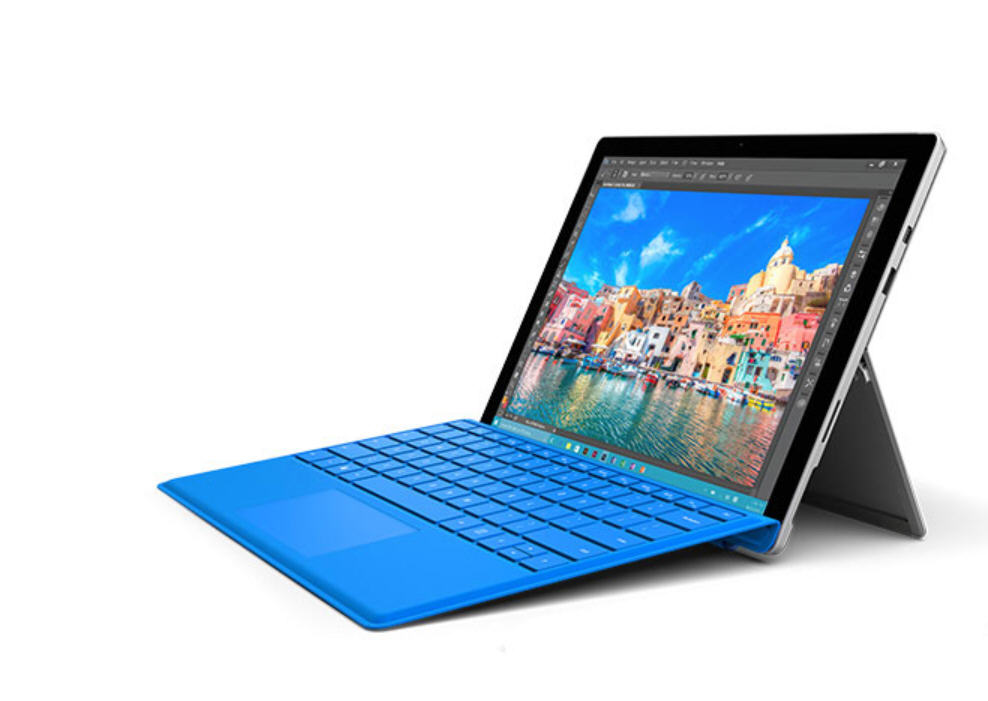
Today, at Microsoft's New York City event, the software giant announced the Surface Pro 4. It features Skylake processors, a slightly larger screen, plus options for 16GB of RAM and 1TB of storage. It’s a great follow up to Surface Pro 3, and offers everything you could possibly want, including Windows 10 Pro, naturally.
The new device is just 8.4 mm thin, and features an impressive looking 12.3-inch PixelSense display. It’s powered by 6th Generation Intel Core m, Core i5, and Core i7 processors. There’s better battery life and more powerful graphics processing. It should finally be able to output 4K at 60 Hz. But… don’t get too excited. There’s one very, very good reason why you probably won’t want to buy it.
The problem with the new "tablet that can replace your laptop" is at the same event Microsoft also released a laptop that can replace the Surface Pro 4. The Surface Book is a powerful, very stylish laptop, but it also has a detachable screen, so it can be used like a tablet. Ouch. It’s more expensive true -- prices for the Surface Book start at $1,499, and the cheapest Surface Pro 4 is $899 -- but if you can afford the extra, you really should.
SEE ALSO: With Surface Book, Microsoft reinvents the PC -- again
Surface Pro 4 is still excellent, don’t get me wrong. It’s 30 percent more powerful than Surface Pro 3, quieter, and runs much cooler. It’s more efficient too. Microsoft says you can expect up to nine hours of battery life.
There’s a new Surface Pro 4 Type Cover that takes Surface Pro 4 from "tablet to laptop in an instant" and features a redesigned mechanical keyboard with optimal key spacing for better typing (good news for Surface Pro 3 users is this new cover is backwards compatible with the older device). It comes with an optional fingerprint reader as well, which you’ll be able to use with Windows Hello.
The Surface Pen has been improved and packs 1,024 levels of pressure sensitivity.
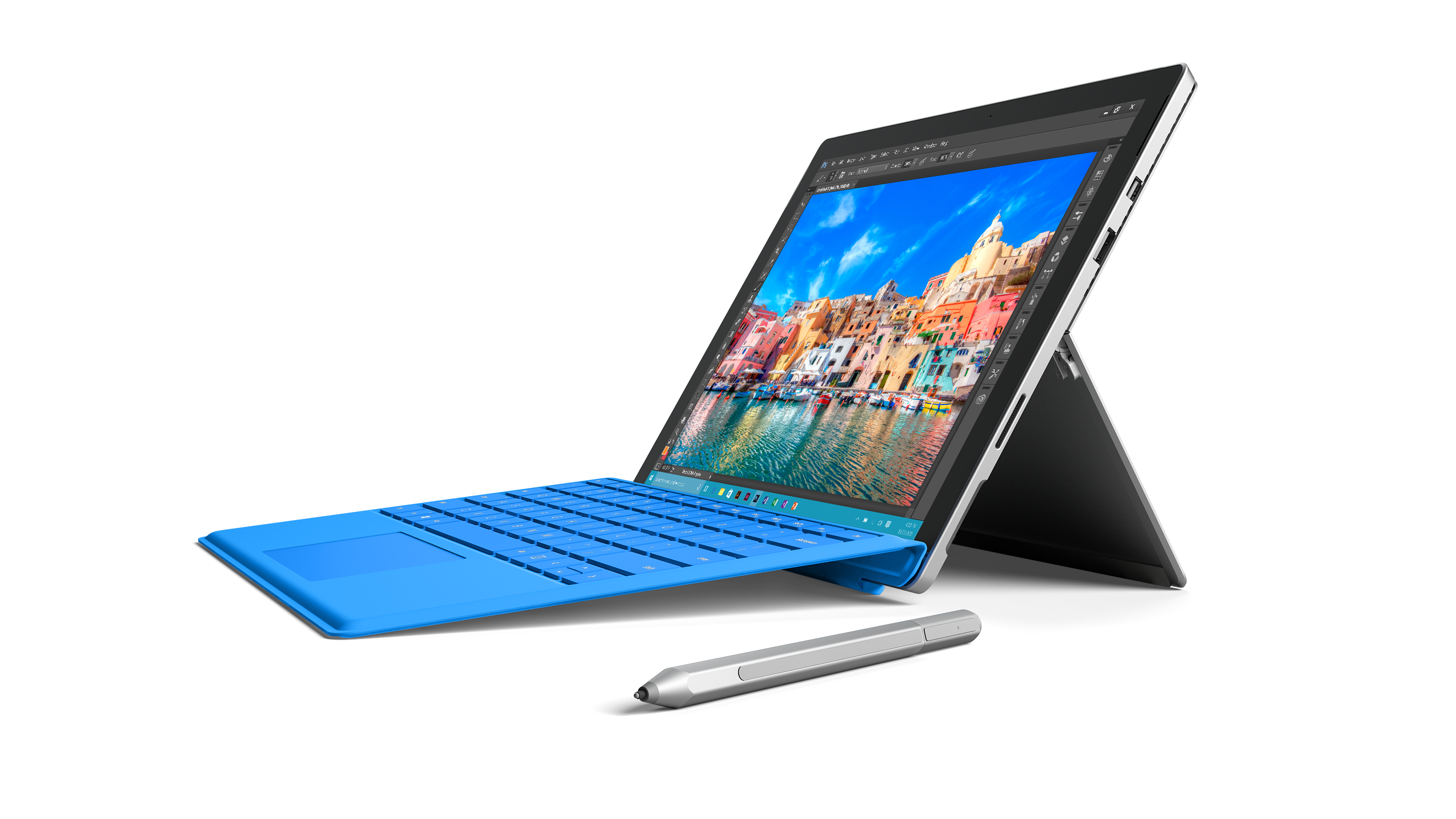
The full specs are as follows:
- Operating System -- Windows 10 Pro
- Dimensions -- 11.50 x 7.93 x 0.33 in (292.10 x 201.42 x 8.4 mm)
- Weight -- 1.69 lbs. (766 g) Intel Core m, or 1.73 lbs. (786 g) Intel Core i5 and Core i7.
- Mechanical features -- Magnesium body, kickstand with full-friction multiposition hinge, magnetic attach for keyboard fold stability
- Color -- Silver
- Physical buttons -- volume, power
- Display -- Screen: 12.3-inch PixelSense Display, 2736x1824 (267 ppi), contrast ratio: 1300:1, aspect ratio: 3:2, 100 percent sRGB color, individually calibrated
- Touch -- 10-point multitouch with GPU-based processing
- Processor -- 6th Generation Intel Core m3, Core i5 or Core i7
- Graphics -- Intel HD graphics 515 (Intel Core m3), Intel HD graphics 520 (Intel Core i5), Intel Iris graphics 540 (Intel Core i7)
- Memory -- 4 GB, 8 GB or 16 GB RAM
- Storage -- Solid-state drive (SSD) PCIe 3.0: 128 GB, 256 GB, 512 GB or 1 TB
- Security -- TPM 2.0 chip for enterprise security
- Pen -- Surface Pen, 1,024 levels of pressure sensitivity, magnetic storage
- Network -- 802.11ac 2x2 MIMO Wi-Fi wireless networking; IEEE 802.11a/b/g/n compatible, Bluetooth 4.0 LE wireless technology
- Battery -- Up to 9 hours of battery life for video playback2
- Cameras -- Windows Hello face-authentication camera (front-facing), 8.0 megapixel rear-facing auto-focus camera, with 1080p HD camera, 5.0 megapixel front-facing 1080p HD camera
- Audio -- Stereo microphones, stereo speakers with Dolby audio
- Ports -- Full-size USB 3.0, Mini DisplayPort, microSD card reader (UHS-I performance), Stereo headphones/microphone jack, Type Cover, Surface Connect for power and docking
- Sensors -- Ambient light sensor, Accelerometer, Gyroscope, Magnetometer
- Power supply -- 24W power supply (Intel Core m3), 36W power supply with USB charging port (Intel Core i5 and Core i7)
- In the box -- Surface Pro 4, Surface Pen, power supply quick start guide, safety and warranty documents
- Warranty -- One-year limited hardware warranty
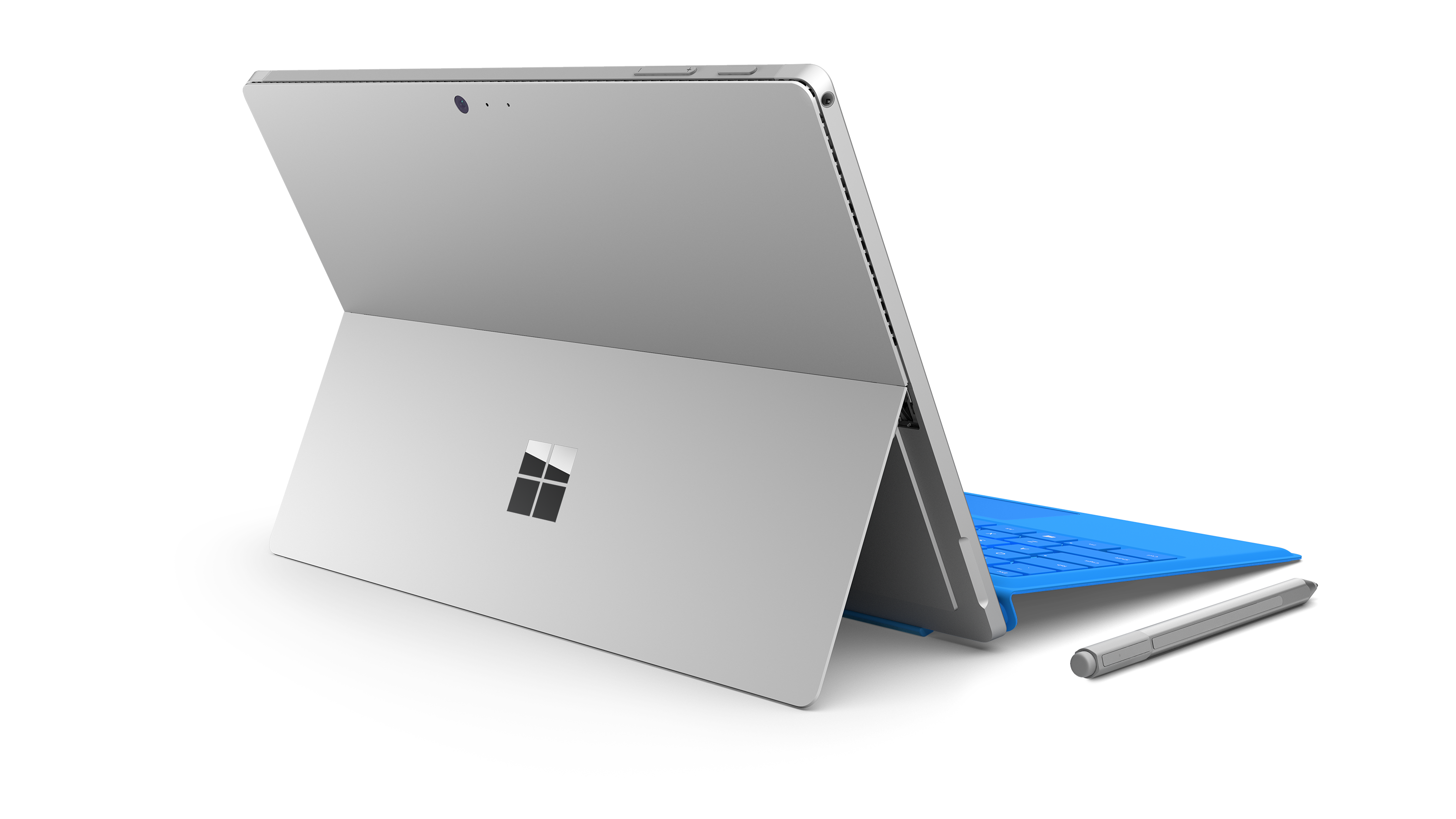
Surface Pro 4 and new accessories will be available for preorder in select markets from October 7, then for purchase in Canada and the United States on October 26, with additional markets to follow.
As for pricing, the 128 GB Core M3 with 4 GB of RAM costs $899, the 128 GB Core i5 with 4 GB of RAM is $999, the 256 GB Core i5 with 8 GB of RAM will set you back $1,299 , and the 256 GB Core i7 versions with 8 GB and 16GB of RAM are $1,599 and $1,799 respectively. The top of the range 512 GB Core i7 with 16 GB of RAM costs $2,199.
-

Windows 10 now on 110 million devices
Publié: octobre 6, 2015, 5:07pm CEST par Wayne Williams
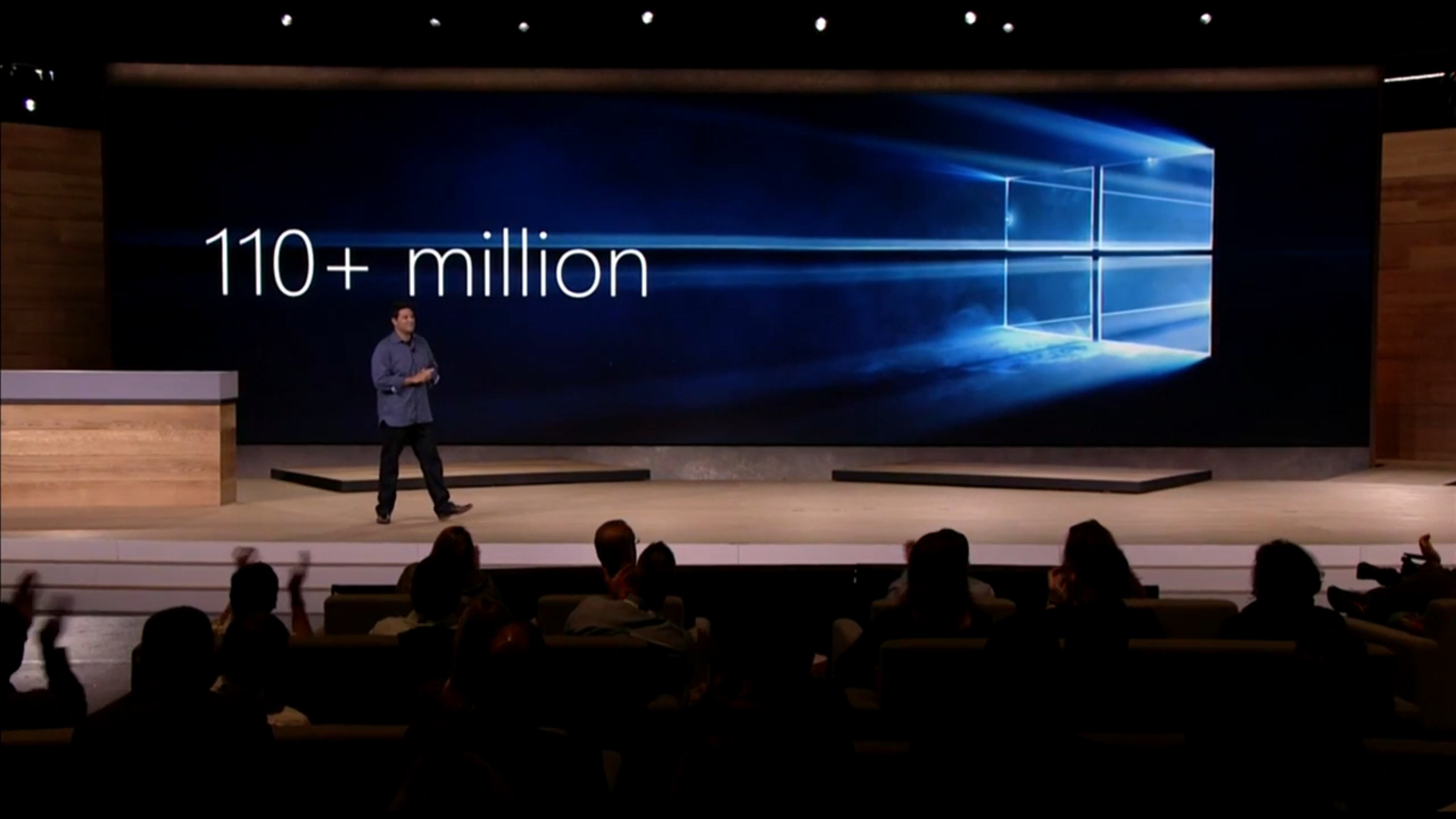
Microsoft has been releasing regular updates concerning Windows 10 adoption. At the end of August, Yusuf Mehdi, Corporate Vice President of Marketing for Windows and Devices, shared the news on Twitter that Windows 10 was on 75 million devices. At the end of last month, Microsoft By The Numbers said that number had increased to over 100 million.
Today, at its new Microsoft devices event in New York City, Terry Myerson, Microsoft's EVP of Windows and Devices Group, provided the newest update, announcing that the new OS is now on over 110 million devices.
That’s a decent increase, but does show the adoption rate slowing slightly, as is to be expected.
The vast majority of devices updated to run the new OS are consumer ones. Business PCs currently only account for just over 8 million devices, but we all know how slowly upgrades happen in the business world.
Myerson also revealed that there have been over a billion visits to the Windows Store, and that new, big name apps were coming soon, including releases from Facebook -- one of the big absentees -- and Uber.
-

Watch Microsoft's new Windows 10 devices launch live here
Publié: octobre 6, 2015, 1:20pm CEST par Wayne Williams
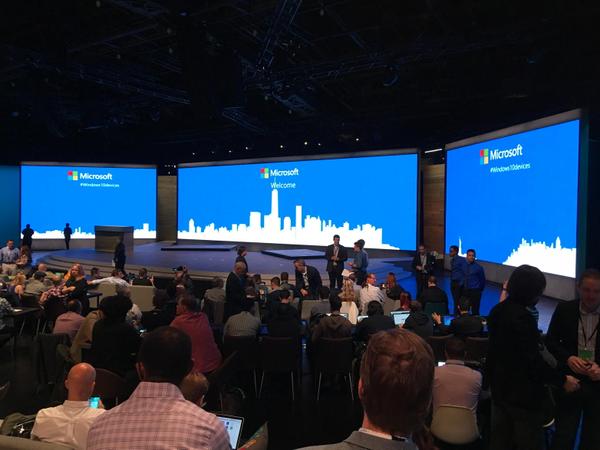
With Windows 10’s momentum slowing, Microsoft needs to reignite interest in its new operating system, and what better way to do that than by introducing new devices designed to showcase the OS. Today at a special event in New York City the software giant will be taking the wraps off its latest hardware ventures.
We’re expecting to see a refreshed Surface Pro at the event, possibly with a borderless display, new Lumia smartphones -- including the 950 and 950 XL flagships -- and maybe other devices too. A closer look at Surface Hub, HoloLens, and Windows 10 Mobile are all possibilities as well. It definitely promises to be an exciting event.
BetaNews’ Brian Fagioli will be there to bring you hands on reports following the event, but Microsoft will be streaming proceedings, and you’ll be able to tune in live here.
The event kicks off at 10AM EDT/3PM BST, and the stream is already live.
What are you hoping to see revealed today?
Image Credit: Brian Fagioli
-

How to fix Windows 10's blurry font problem
Publié: octobre 5, 2015, 2:43pm CEST par Wayne Williams
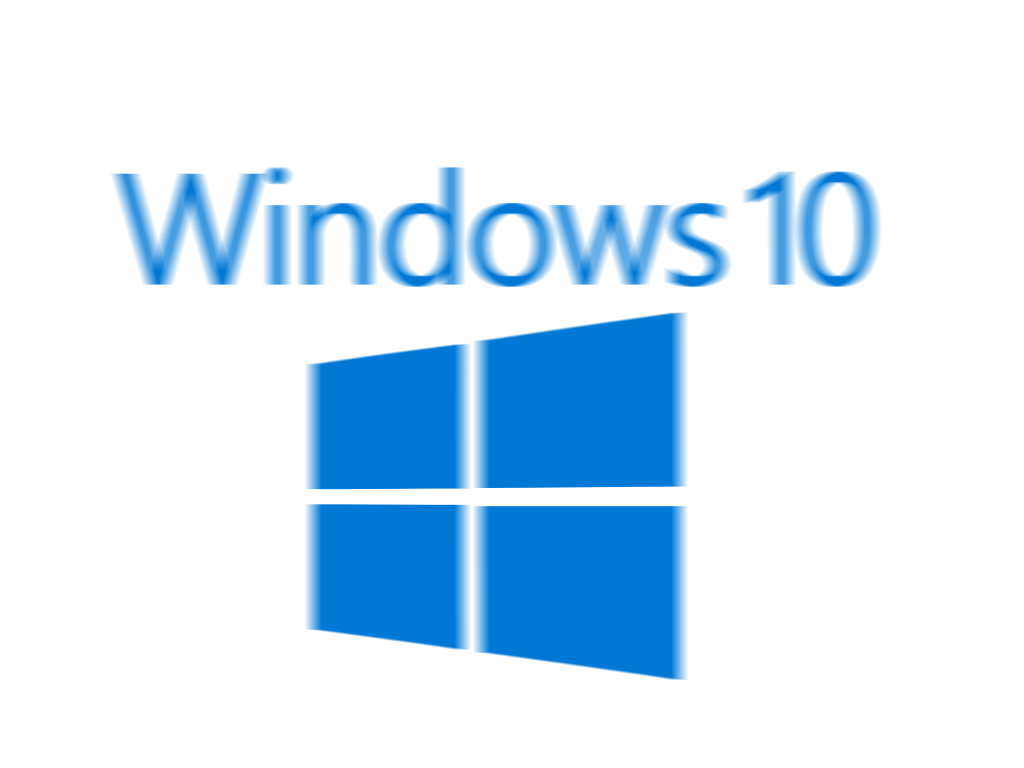
If you change the DPI scaling to make text, apps and other items easier to read on your Windows device, you may have encountered the problem of blurry fonts in Windows 10.
The issue is caused by Microsoft using a different scaling method to the one it used in previous versions of Windows (stretching back to Vista), and mostly affects the Windows font and dialog boxes.
SEE ALSO: How to fix Windows 10's worst problems
If you have a very high res monitor, and like to boost scaling to make everything more readable this can be a frustrating problem (I speak from experience). Fortunately it’s easy to change the scaling method back to the one Microsoft used in past Windows versions.
While you can make the required change in the registry, Windows automatically resets your DPI settings every two reboots, so you’d need to keep repeating the change. The better option therefore is to use XPExplorer’s Windows 10 DPI Fix.
Just run the program and choose the scaling method you require (Windows 10 default, or Windows 8.1 scaling). You’ll need to reboot your PC for the change to take effect.
-

Windows 10's growth slows dramatically
Publié: octobre 1, 2015, 2:36pm CEST par Wayne Williams

The previous set of usage figures released by analysis firm NetMarketShare showed users were upgrading to Windows 10 at an impressive rate. In August -- the first full month of availability for the new OS -- Windows 10 went from 0.39 percent to 5.21 percent share, leapfrogging Windows 8 (but not Windows 8.1) in the process.
Given how easy it is for Windows 7 and Windows 8.1 users to upgrade to the new OS (the files get downloaded onto your hard drive in preparation), and the fact it’s free to those users too, you would no doubt have expected this pace to continue in September, maybe even accelerate a little. Unfortunately for Microsoft, interest in Windows 10 appears to have actually waned considerably in that month.
Eager upgraders were obviously behind the spike we saw in August, but the drop off in September is slightly surprising. While Windows 10 still grew its share, it only managed a gain of 1.42 percentage points which puts it on 6.63 percent.
Elsewhere, Windows 8 actually rallied fractionally in September, going from 2.56 percent to 2.60 percent, a minor increase of 0.04 percentage points. Windows 8.1 fell 0.67 percentage points, going from 11.39 percent to 10.72 percent. Combined, Windows 8.x currently has 13.32 percent of the market.
Based on the current growth/decline rates we can expect to see Windows 10 overtake Windows 8.x by January now.
As to the top dog, Windows 7’s share is declining, but at a gentle pace. Users are in no great hurry to abandon it for Windows 10 it seems. In August Windows 7 had a 57.67 percent share. In September it was on 56.53 percent. A drop of 1.14 percentage points.
Windows XP shows no signs of disappearing anytime soon either, and actually grew share last month, going from 12.14 percent to 12.21 percent.
If you’re wondering how Windows 10’s current rate of growth compares with that of past operating systems, I can tell you. When Windows 7 launched it took just one month to take 6.21 percent of the market, and it was at 8.30 percent by the following month. Windows 8 on the other hand was a disaster at launch, managing just 1.76 percent in its first full month, and hitting 2.53 percent in its second month.
Both of those operating systems launched at the end of October though, so had the holiday buying season helping them (which makes the scale of Windows 8’s failure to perform look even worse).
It will be interesting to see how Windows 10 does in October. Will upgrades pick up as the winter draws nearer, or will interest tail off further still? Place your bets...
Photo credit: Igor Kovalchuk/Shutterstock
-

Apple rushes out iOS 9.0.2 -- fixes crippling mobile data bug and other issues
Publié: septembre 30, 2015, 7:33pm CEST par Wayne Williams

After updating my iPhone 5s to iOS 9 and then using the backup to set up my new iPhone 6s I encountered an annoying bug that prevented certain apps from being able to use mobile data. The bug was so crippling that it (temporarily at least) had me regretting my recent purchase. You can read the full story here.
I wasn’t alone in suffering from this bug and Apple promised frustrated users that a fix was on its way. Well, today that fix arrives. And that’s not the only iOS 9 issue it addresses.
According to the details supplied with the update it:
- Fixes an issue with the setting to turn on or off app mobile data usage.
- Resolves an issue that prevented iMessage activation for some users.
- Resolves an issue where an iCloud Backup could be interrupted after starting a manual backup.
- Fixes an issue where the screen could incorrectly rotate when receiving notifications.
- Improves the stability of Podcasts.
It's great that Apple has managed to issue the fix so quickly, although annoying it wasn't picked up before iOS 9 was made widely available.
Image Credit: PathDoc / Shutterstock
-

Suspicious Windows 7 Update has users worried Microsoft's servers may have been compromised [Update]
Publié: septembre 30, 2015, 7:03pm CEST par Wayne Williams
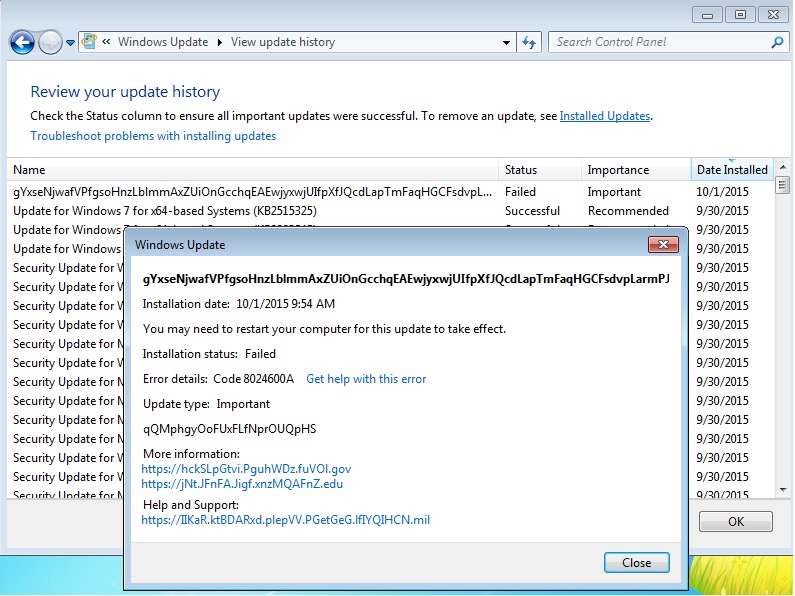
If you’re a Windows 7 user, you might want to check carefully which updates you install. Users on Windows forums, Reddit and Twitter are concerned about a new "important" update that looks more than a little suspicious.
The update appears to be a language pack, but the details that accompany it are far from the usual information you’d expect to see, leaving many to wonder if Microsoft's update servers could have been compromised.
The update information is along the following lines:
gYxseNjwafVPfgsoHnzLblmmAxZUiOnGcchqEAEwjyxwjUIfpXfJQcdLapTmFaq
HGCFsdvpLarmPJLOZYMEILGNIPwNOgEazuBVJcyVjBRL
Download size: 4.3 MB
You may need to restart your computer for this update to take effect.
Update type: Important
qQMphgyOoFUxFLfNprOUQpHS
More information:
https://hckSLpGtvi.PguhWDz.fuVOl.gov
https://jNt.JFnFA.Jigf.xnzMQAFnZ.eduHelp and Support:
https://IIKaR.ktBDARxd.plepVV.PGetGeG.lfIYQIHCN.milThe weird name and "More information" and "Help and support" site links are, understandably, what have caused alarm bells to start ringing.
We've reached out to Microsoft and will update this story once we get a response.
Have you encountered this update? Let us know in the comments below.
[Update] A Microsoft spokesperson tells us "We incorrectly published a test update and are in the process of removing it". Panic over.
-

iPhone supertest: All 12 of Apple's iPhones go head to head, but which one wins?
Publié: septembre 30, 2015, 1:45pm CEST par Wayne Williams
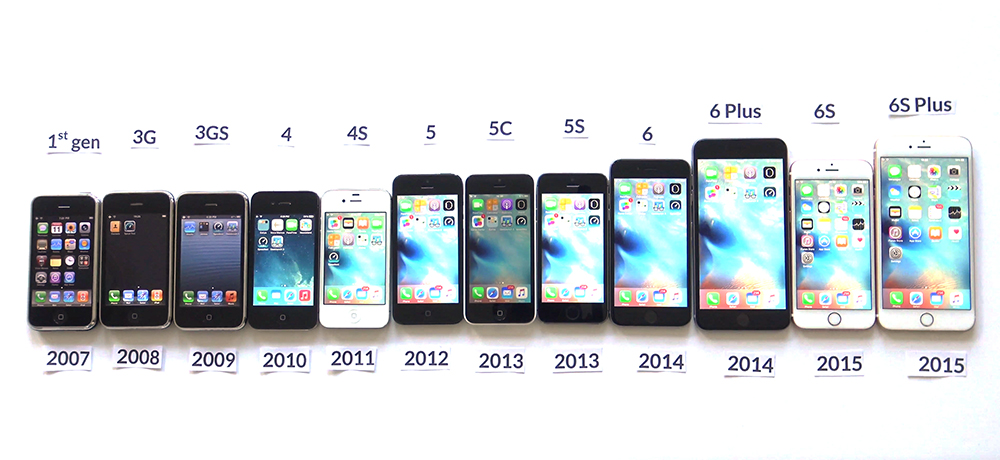
Unless you’re a hard-core Apple fan, or simply must have the latest and greatest iPhone at all times, there’s no need to jump on every new mobile device Apple releases. I switched from the iPhone 5s to the 6s this year, and found the difference between models to more than justify the upgrade.
If you’ve ever wondered how the different generations of iPhone compare when it comes to things like start up speed, performance, web page loading, camera quality, and more, a new experiment has the answer. And before you shout out that the iPhone 6s Plus is going to be the clear winner, here’s a spoiler: it isn’t.
UnlockRiver.com ran a series of tests on all 12 iPhone variations -- iPhone 1st gen, 3G, 3Gs, 4, 4s, 5, 5c, 5s, 6, 6Plus, 6s, and 6s Plus -- and while the newer, more powerful iPhones clearly have the edge over their older siblings, there are still some surprises in the results.
The company reset each device to its factory settings and updated the iPhones to the latest version of iOS supported on each model before running the tests.
Watch the video below to see how the different generations got on. Underneath that is a composite picture taken using the different iPhone cameras. It’s impressive to see how well the iPhone’s photographic capabilities have come on since the very first device was launched back in 2007.
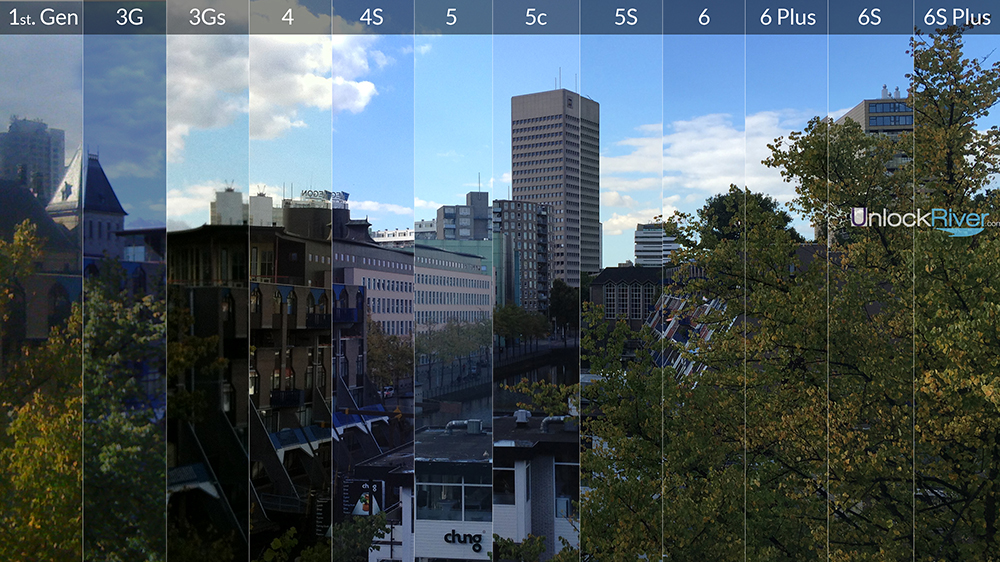
-

Watch Google's Nexus 5X/6P event here LIVE
Publié: septembre 29, 2015, 6:00pm CEST par Wayne Williams

Even though pretty much everything you could wish to know about Google’s next generation of Nexus branded smartphones has already been leaked on to the web, the search giant will be unveiling them officially today.
You can expect to see Google reveal the Nexus 5X, a 5.2in smartphone, and the Nexus 6P, a 5.7in device that will be slightly smaller than last year’s Nexus 6. Google is believed to be planning to showcase the Chromecast 2 at the event too.
The Nexus 5X will be powered by a 64-bit 2.0 GHz Snapdragon 808 processor with an Adreno 418 GPU. It is expected to be available in 16 and 32 GB, and come with a 12.3-megapixel rear camera, and a 5-megapixel front shooter.
The Nexus 6P has a Snapdragon 810 system-on-a-chip, and be available in 32 GB, 64 GB, and 128 GB.
The event starts at 9 AM PT/5PM BST and you can watch the live stream here.
Are you planning on buying one of Google's new phones?
-

iPhone 6s and 6s Plus' opening weekend sales record isn't as impressive as Apple would like you to think
Publié: septembre 28, 2015, 3:44pm CEST par Wayne Williams

You know where you stand with Apple and the iPhone. Every year a new model arrives in September. You get an updated flagship (an 's' model on alternate years), and a spin off version (the 5c, the Plus) for a bit of extra revenue. Then, shortly after the new iterations go on sale, you get an announcement from Apple declaring a new weekend sales record.
At some point this record breaking run will end, although it’s not likely to happen anytime soon. Today Apple announces more than 13 million iPhone 6s and 6s Plus have been sold around the world. It’s a huge achievement, and blows past last year’s numbers, but all is not as it seems.
13 million is unquestionably a LOT of devices -- especially as there are still plenty of markets that don’t have the new iPhones on sale yet. 40 additional countries, including Italy, Mexico, Russia, Spain and Taiwan, will be added to the list of available territories by October 9 (by the end of the year the new iPhones will be offered in over 130 countries).
But here’s the rub…
If you don’t recall last year’s numbers, the iPhone 6 and 6 Plus sold 10 million units across the launch weekend, up from the 9 million the 5s and 5c managed the year before. This year’s 13 million is quite a step up, although it’s not tricky to pinpoint the reason for the leap.
Sure, the new iPhone is a marked improvement over its predecessor, but the biggest reason for the improved sales is that for the first time Chinese customers are able to pick up the latest version on the same day as consumers in the US, UK, and certain parts of Europe and Asia. When you consider the size of the Chinese market, suddenly the increase over last year’s figures doesn’t seem quite so impressive.
"Sales for iPhone 6s and iPhone 6s Plus have been phenomenal, blowing past any previous first weekend sales results in Apple’s history", said Tim Cook, Apple’s CEO. "Customers’ feedback is incredible and they are loving 3D Touch and Live Photos, and we can’t wait to bring iPhone 6s and iPhone 6s Plus to customers in even more countries on October 9".
The iPhone 6s and the 6s Plus are a huge hit, and there was never any doubt they would be. But the record breaking numbers are as much down to strategic shipment planning at Apple as they are to consumer excitement.
Image Credit: Minerva Studio / Shutterstock
-

Stupid iOS 9 bug makes me regret buying an iPhone 6s
Publié: septembre 28, 2015, 1:57pm CEST par Wayne Williams

The iPhone 6s is a great phone. Mine arrived on Friday and I’ll be reviewing it in the next couple of days or so. It has some very welcome improvements over my previous Apple phone -- the iPhone 5s -- and 3D Touch has the potential to be a real game changer.
However, my enjoyment of the new phone has been tainted thanks to an incredibly annoying bug that makes the iPhone 6s next to useless when out and about. In fact, when I went out for the day yesterday, I was forced to leave the shiny new iPhone 6s at home and take my aging Android phone with me instead.
The bug I’m referring to affects the Mobile Data settings. The iPhone lets you choose which apps can use your cellular connection. A handy feature which stops unnecessary data consumption and helps keep costs down. Except the bug in iOS 9 prevents certain apps from using mobile data -- at all, ever. I toggle the switch next to a bunch of apps in Settings, but the moment I leave Settings everything reverts to how it was.
Not a major deal you might think, but actually that limits what I can do when not connected to a wireless network. I can’t use Facebook (no more checking in, or posting updates as to where I am), I can’t get directions from Google Maps (or Apple Maps for that matter) when I most need to. Nor can I check on the latest news headlines, or the weather.
Because of how the bug works, not every app is blocked. So I can still get my mail and access the web, but I’m so conditioned to using apps that when they don’t work as intended it proves incredibly frustrating.
The bug rears its ugly head when you upgrade from iOS 8 to iOS 9, as I did with my iPhone 5s. Apps that were set to use mobile data before the upgrade, can continue to use mobile data in iOS 9. Apps that weren’t enabled, can’t. I did notice the issue on my 5s a few days after the "upgrade" (I tried and failed to use Google Maps on a journey), but I didn’t pay too much attention at the time. I figured it was a temporary glitch.
I set up my iPhone 6s using a new backup from the iPhone 5s -- so all the apps and settings were copied over... but unfortunately the iOS 9 bug came too.
So what can I do about the problem? I have a couple of options. According to Apple and Apple Support Communities I can restore my phone from an old pre-iOS 9 backup, but unfortunately I don't have one. And even if I did, I really don’t want to do that. This is an iPhone 6s -- it comes with iOS 9 preinstalled!
Or I could wipe my phone and set it up as a brand new device. The latter option should work, although if I do go down that route I’ll need to spend hours reinstalling all of my apps again, and my existing settings will be wiped.
Both choices are highly unsatisfactory. Or I could wait for Apple to fix the problem. It might be addressed in iOS 9.0.2, but there’s no guarantee that will be the case.
This isn't even the only major bug in iOS 9. A lot of users report they can’t use mobile data at all on their devices, and a Slide to Upgrade bug succeeded in killing some iPhones.
So what now? I might roll back my iPhone 5s to iOS 8.4.1 and see if that that fixes the problem. If it does, I will enable all of the apps for mobile access, then try the iOS 9 upgrade again. If that works -- and I won’t be holding my breath -- I will try backing up the device and then wiping the iPhone 6s and restoring it from the new backup.
Or I might just carry around two phones (6s and Android) until Apple finally gets its shit together and fixes this crippling bug.
Image Credit: Johan Larson / Shutterstock
-

Watch the first 4K movie shot entirely on the Apple iPhone 6s Plus
Publié: septembre 25, 2015, 7:37pm CEST par Wayne Williams
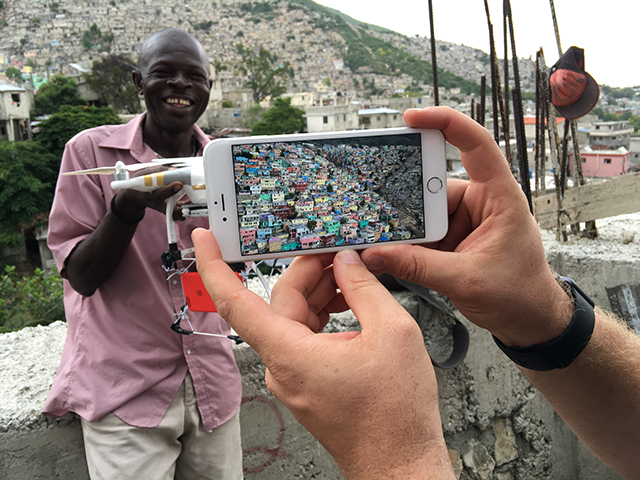
Among the new features added to Apple’s new iPhone 6s is 4K (3840 x 2160) video recording at 30fps. The super-sized iPhone 6 Plus adds optical image stabilization to the mix -- sadly missing from the smaller 6s -- which makes it a potentially great device to film high quality movies on (even if you aren’t able to watch them back in 4K on either your phone or the new Apple TV).
To show off the new phone’s potential as a film making tool, Apple approached RYOT Films and asked them to shoot a short movie in 4K entirely on the iPhone 6s Plus, and the finished result is now available to watch for free on YouTube.
"The Painter of Jalouzi" is a documentary that tells the story of a man from Jalouzi -- one of the largest slums in Haiti -- who helps mobilize his entire town to paint their community walls, buses, and hillsides in bright colors, in the hopes of bringing a new spirit to the impoverished area.
What’s even more impressive than the fact RYOT co-founders David Darg and Bryn Mooser made the film using just an iPhone 6s Plus is that they recorded all the footage in a single week and only finished the movie a few days ago.
You can watch the documentary below, and there’s an interesting behind the scenes companion piece which is also worth a watch.
-

Ford's voice-activated car tech recognizes and responds to local accents
Publié: septembre 25, 2015, 9:36am CEST par Wayne Williams
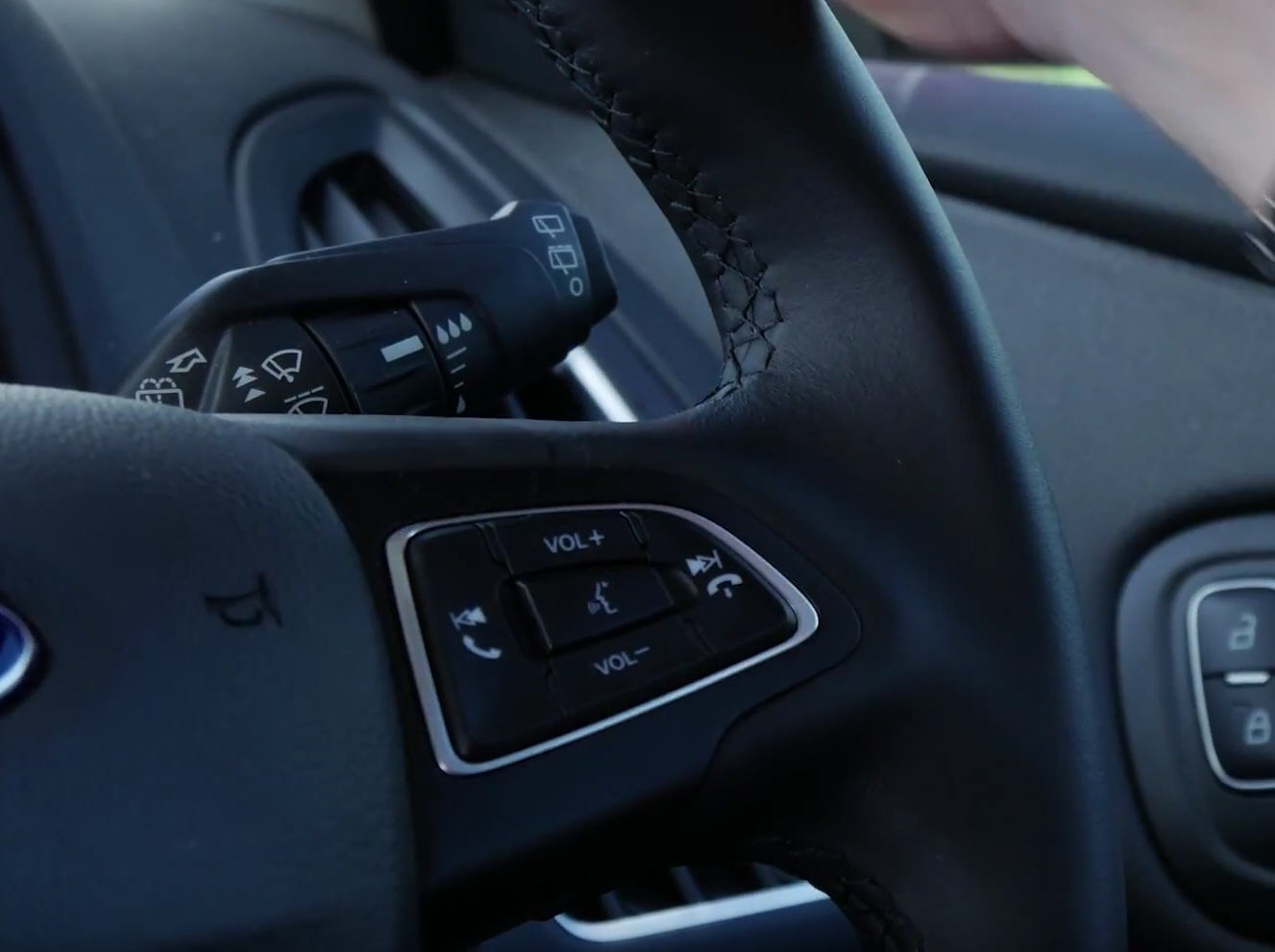
Just because you speak the same language as someone else, it doesn’t mean you pronounce your words in the same way. There are so many regional variations of English that it can be difficult for a person born and raised in one area of a country to understand the accent of someone born and raised just a few hundred miles away. I’ve watched TV shows where people speaking perfectly good English have been subtitled because they have a really strong accent that not everyone can follow.
If people struggle to comprehend other people, you can only imagine the problems machines have with these variations. If you’ve ever spent time repeating the same set of words or commands in a variety of accents in an effort to have a piece of software understand and respond to you, you’ll appreciate what I’m saying.
The problem of not being understood by voice activated technology is particularly problematic in cars. When driving your focus should be on the road rather than trying to get your vehicle to recognise your request to place a call or play a music track.
Thankfully, Ford has a solution in the form of its global voice-activated SYNC Technology which responds to local accents. It can understand accents from Bavarian German to Liverpudlian English in 17 languages. The driver only has to say a few words, and accent will be recognized and remembered (should another driver use the vehicle the system will update a saved file to recognize their voice).
Developed in partnership with Nuance Communications and available on more than 12 million Ford vehicles worldwide, SYNC systems are supported by a dictionary that includes alternative pronunciations of words, compiled following field recordings of thousands of drivers around the world.
"People rightly consider their accent a key to who they are as a person. Practically ensuring that you can easily communicate with your vehicle, whatever part of the country you are from, helps ensure a more convenient journey", said Christof Kellerwessel, global chief engineer, Electronic and Electrical Systems Engineering, Ford of Europe.
Building the dictionaries for each SYNC language version required researchers to travel to every corner of each country and record speakers using some of the broad range of accents that exist, and are continually emerging.
Languages available for SYNC vary according to operating system but may include UK English, US English (aka ‘American’), Australian English, Arabic, Brazilian Portuguese, Canadian French, Dutch, French, German, Italian, Mandarin, Mexican Spanish, Portuguese, Russian, Spanish, Taiwanese Mandarin, and Turkish.
-

Microsoft releases Office 2016
Publié: septembre 22, 2015, 12:48pm CEST par Wayne Williams
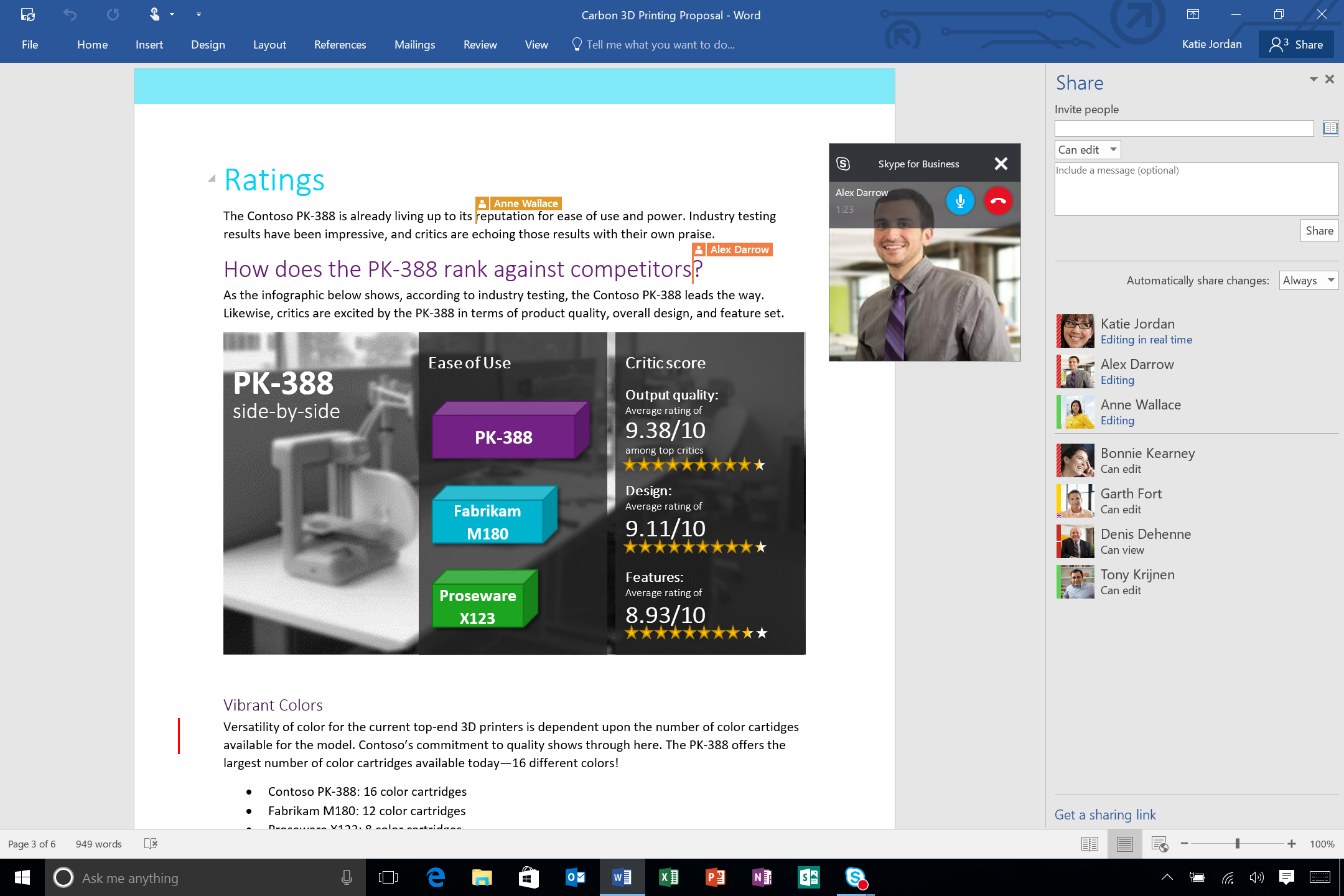
If you’ve been waiting for the latest version of Microsoft Office, we have some good news for you. The latest addition to Office 365, Microsoft’s cloud-based subscription service, is available now.
Office 2016 delivers new versions of the desktop apps for Windows, including Word, Excel, PowerPoint, Outlook, OneNote, Project, Visio and Access. Office 365 subscribers can choose to download the new Office 2016 apps as part of their subscription. Automatic updates will begin rolling out to consumers and small-businesses next month.
"The way people work has changed dramatically, and that’s why Microsoft is focused on reinventing productivity and business processes for the mobile-first, cloud-first world", says Satya Nadella, chief executive officer of Microsoft. "These latest innovations take another big step forward in transforming Office from a familiar set of individual productivity apps to a connected set of apps and services designed for modern working, collaboration and teamwork".
The new Office 2016 apps are available in 40 languages and require Windows 7 or later. Office 2016 is also available today as a one-time purchase for both PCs and Macs.
More information is available at [Office365.com].
-

CCleaner is now available in the cloud -- no download required
Publié: septembre 22, 2015, 12:23pm CEST par Wayne Williams
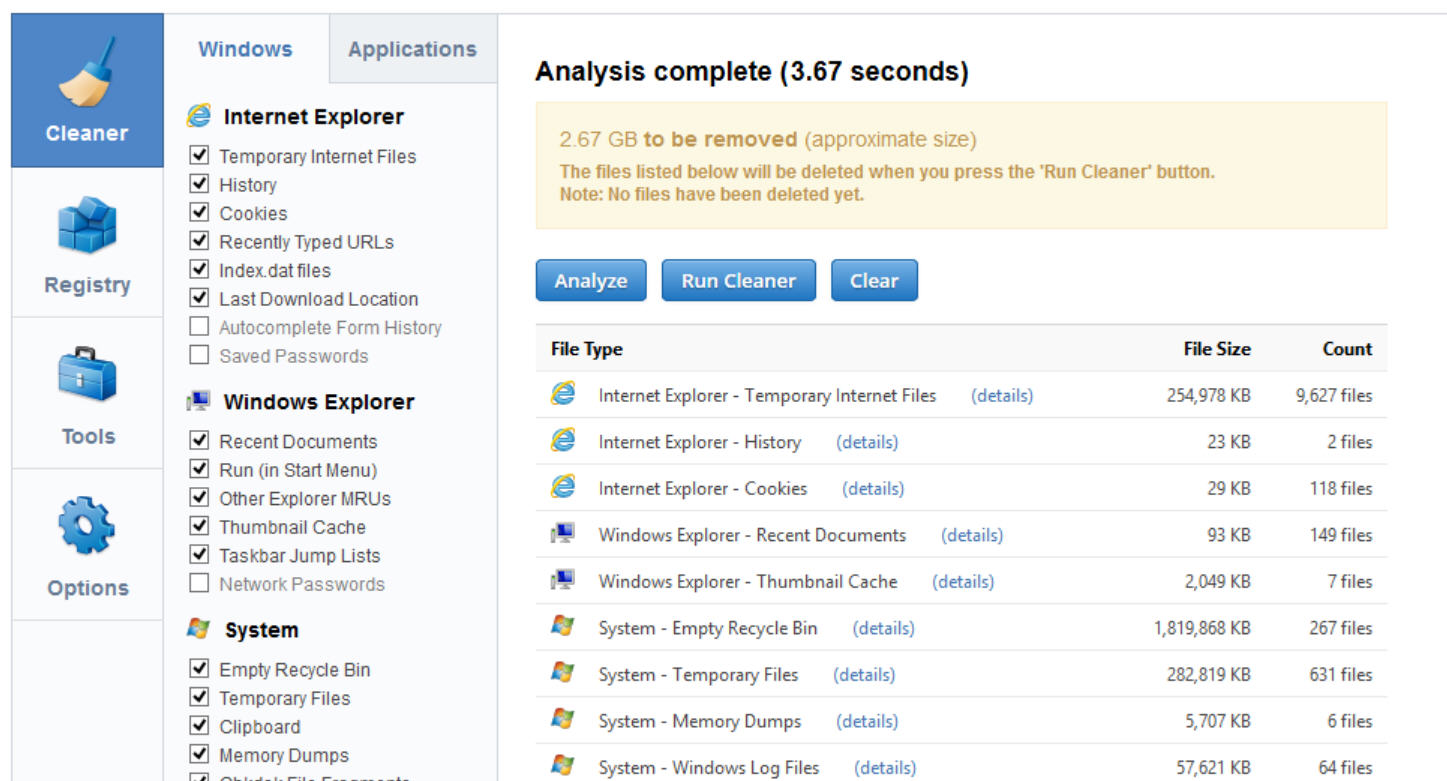
If you want to clear out temporary files and other left over junk on your computer’s hard drive, Piriform’s CCleaner is arguably the best free solution.
For the past two years, the publisher has been working on a web-based version of CCleaner called Project Agomo. The service was in private beta, so to use it you needed to register your interest and await an invite. That all changes from today however, as Project Agomo is no more. Say hello to its replacement -- CCleaner Cloud.
CCleaner Cloud brings the power of CCleaner to the web, so you can manage and maintain your PC remotely -- and not just your own system either. If you’re regularly being called out to help friends and family members with their PCs, CCleaner Cloud will save you a trip as you can run a full spring clean and trouble-shooting session on their system from wherever you happen to be.
CCleaner Cloud offers the following features:
- Clean and declutter all your temporary files, locally or remotely.
- Defrag drives to improve performance and lifespan.
- Fix problems in the Windows Registry.
- Install or remove software from all of your home or work computers.
- View hardware specs and performance stats for your entire network, including CPU load, memory usage and full disks.
You can start using it today. Just go to https://www.ccleaner.com and create an account.
I've been using Project Agomo since it first rolled out, and can wholeheartedly recommend it.
-

CCleaner is now available in the cloud
Publié: septembre 22, 2015, 12:23pm CEST par Wayne Williams

If you want to clear out temporary files and other left over junk on your computer’s hard drive, Piriform’s CCleaner is arguably the best free solution.
For the past two years, the publisher has been working on a web-based version of CCleaner called Project Agomo. The service was in private beta, so to use it you needed to register your interest and await an invite. That all changes from today however, as Project Agomo is no more. Say hello to its replacement -- CCleaner Cloud.
CCleaner Cloud brings the power of CCleaner to the web, so you can manage and maintain your PC remotely -- and not just your own system either. If you’re regularly being called out to help friends and family members with their PCs, CCleaner Cloud will save you a trip as you can run a full spring clean and trouble-shooting session on their system from wherever you happen to be.
CCleaner Cloud offers the following features:
- Clean and declutter all your temporary files, locally or remotely.
- Defrag drives to improve performance and lifespan.
- Fix problems in the Windows Registry.
- Install or remove software from all of your home or work computers.
- View hardware specs and performance stats for your entire network, including CPU load, memory usage and full disks.
More features will be rolling out in the coming weeks.
You can start using it today. Just go to https://www.ccleaner.com and create an account. At the moment the service still says it's in beta, and you need to register your interest to get an invite, but hopefully that will change very soon.
I've been using Project Agomo since it first rolled out, and can wholeheartedly recommend it.
-

Apple Watch owners rejoice -- watchOS 2 is finally available to install
Publié: septembre 21, 2015, 7:38pm CEST par Wayne Williams
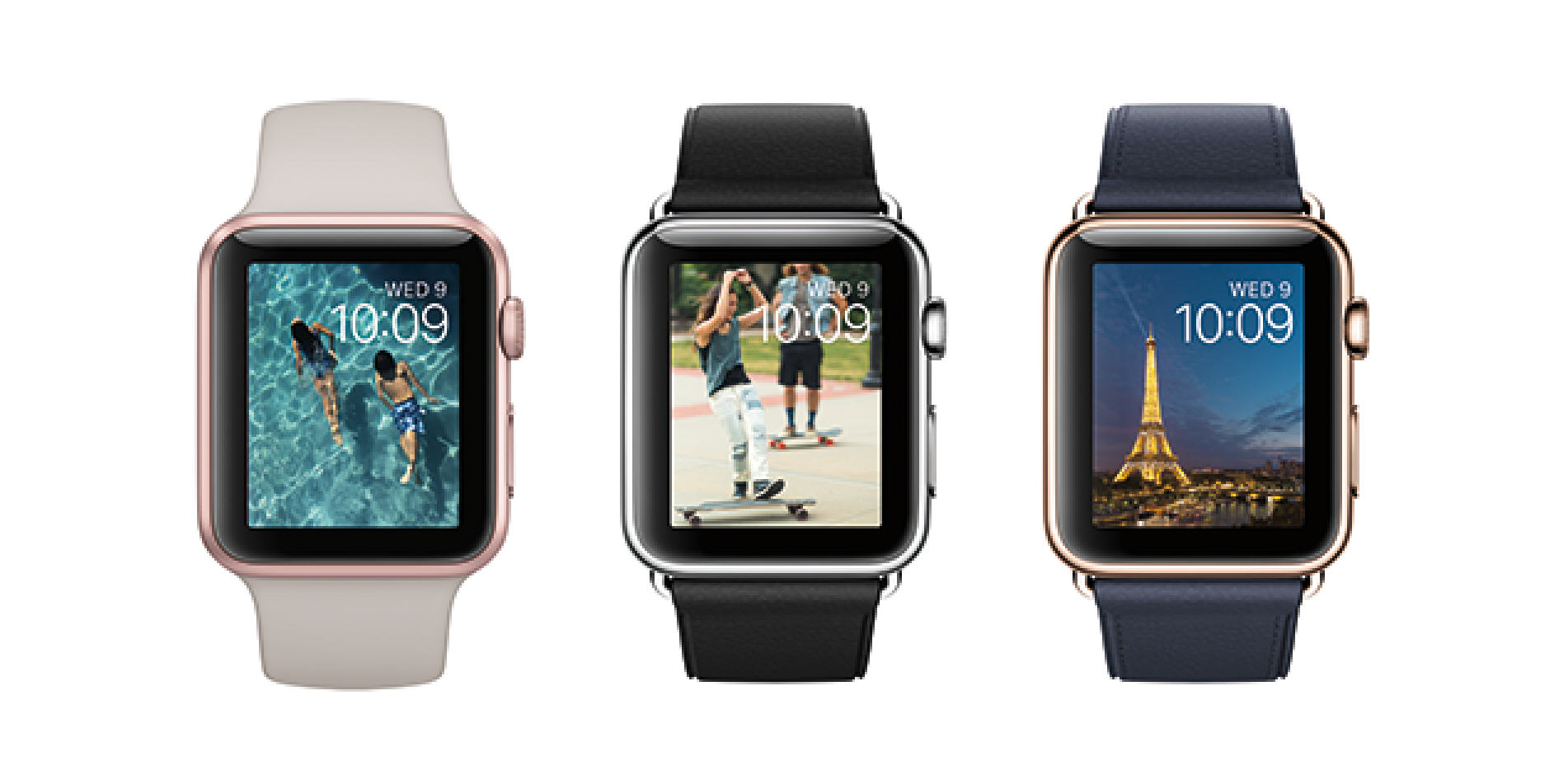
The latest version of the OS that powers Apple’s first wearable was supposed to be released last week, on the same day that iOS 9 hit devices. However, a last minute bug delayed things, leaving Watch owners like myself disappointed.
Since it was only the one -- albeit major -- bug delaying things it was always going to be a case of the updated OS being held back by no more than few days, and today Apple has finally (and quietly) released the new version. If you own an Apple Watch, you can update it now.
So what’s new? A lot. In the release notes Apple says:
This update is the first major software update for Apple Watch and includes new watch faces, third-party app complications, new capabilities in Mail, Friends, and Digital Touch and support for third-party apps running natively.
This last feature is, of course, the big new addition. A lot of people were initially disappointed that Watch does little more than mirror apps installed on the iPhone, and this change boosts the wearable’s capabilities significantly.
Installing the new OS is very straightforward. Open the Watch app on your iPhone (which will need to be connected to the internet via Wi-Fi), and go to General > Software Update. Download the update, agreeing to the terms, and make sure that your Watch is in range of the phone. The wearable will need to have at least 50 percent charge and should (preferably) be on its charger.
Unlike some updates, there’s really no reason to delay upgrading. The first generation of the OS was rather basic, and this version unlocks a lot of Watch’s potential.
iOS 9 took a long time to download and install for most people when it was first released last week due to the sheer number of eager updaters (50 percent of iPhone and iPad users have now upgraded to it) but there’s no such delay with watchOS 2. Partly because it’s a much smaller user base, and partly because a lot of people won’t be aware that the upgrade is now available.
Even so, you can expect the new OS to take around 30 minutes to download and install on the Watch.
-

Fix Windows 10 problems with these troubleshooting tools from Microsoft
Publié: septembre 18, 2015, 2:57pm CEST par Wayne Williams
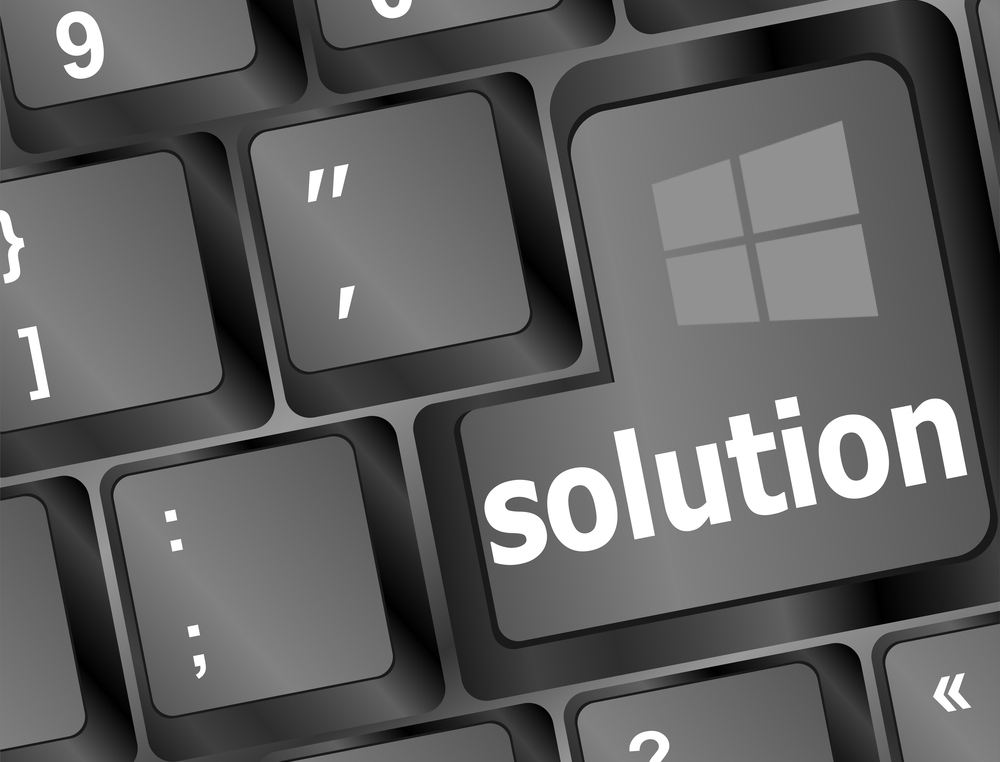
Upgrading to Windows 10 from either Windows 7 or 8.1 should go smoothly and be relatively painless afterwards, but we know from the enduring popularity of features such as How to fix Windows 10's worst problems that it often isn’t the case.
Microsoft also knows that upgraders are encountering all sorts of issues with the new OS, and so has put together a selection of automated troubleshooters designed to fix problems you might be having post-upgrade.
Not every problem is addressed of course (there are simply too many possible issues to tackle them all), but the tech giant is targeting some of the more common woes.
If your problem is one of those listed below, simply click the link to get the relevant fix from Microsoft. You’ll need to run the troubleshooter as an administrator.
Windows 10 App Store not working
Resolve error 0x80004005 for KB3081424
Windows 10 Cumulative Update KB3081424 fails to install
Problems installing and uninstalling programs
Find and fix problems with Printers
Settings won’t open, or the Store launches instead
-

Amazon goes after gamers with the new Fire TV Gaming Edition
Publié: septembre 17, 2015, 4:32pm CEST par Wayne Williams
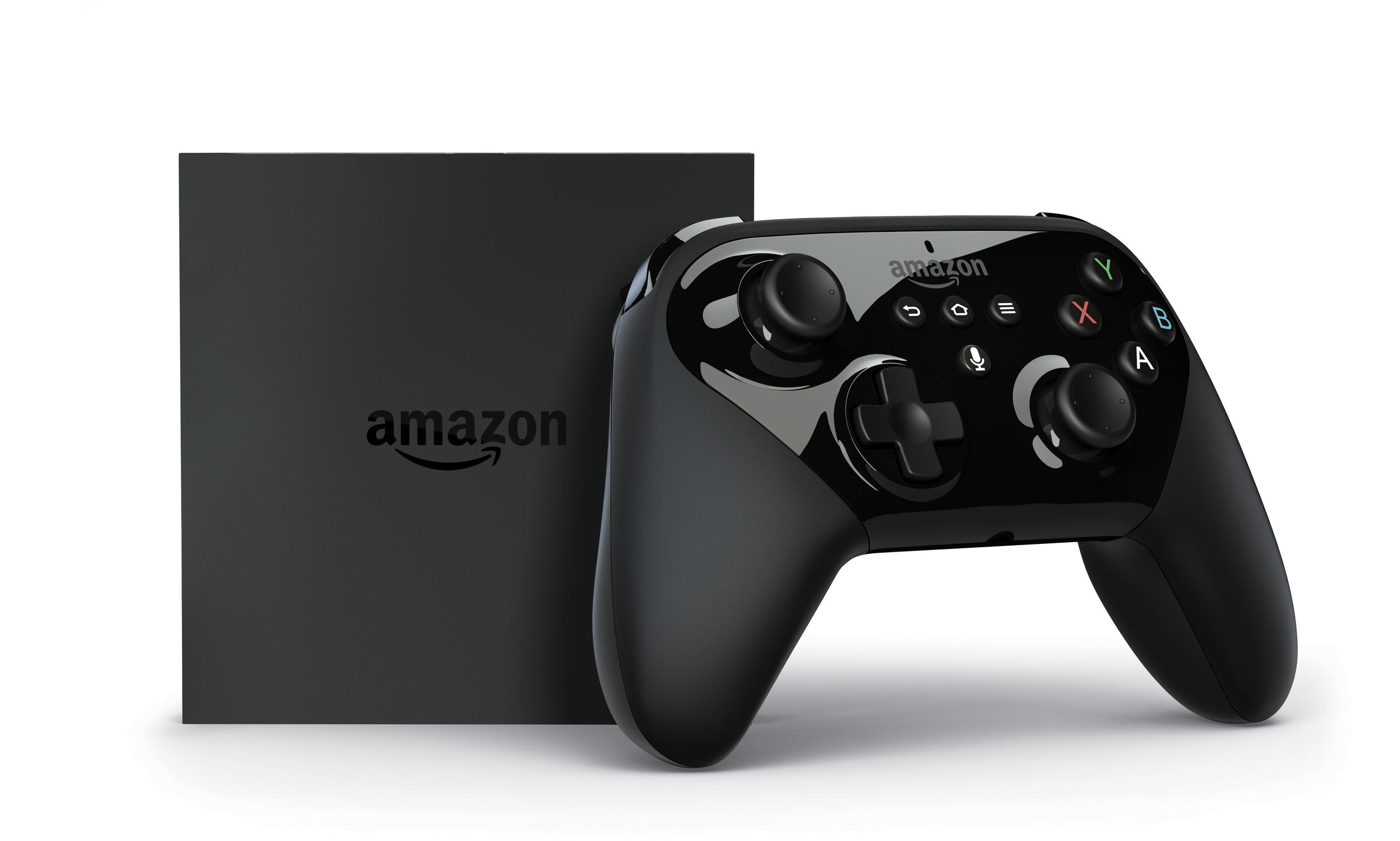
As well as refreshing its Fire TV and Fire TV Stick streaming hardware, Amazon has also introduced a new variation of its set top box aimed squarely at gamers.
The new Amazon Fire TV Gaming Edition combines the updated Amazon Fire TV box with a game controller, a 32 GB microSD card, and two free games: Shovel Knight and Disney’s Ducktales.
The new Fire TV Game Controller (which is also available to purchase separately) features an ergonomic design that I suspect will appeal to Xbox gamers, an audio jack for Dolby-enhanced private listening, and instant voice search with access to Alexa. According to Amazon you can expect 90 hours of battery life on just one set of AA batteries.
SEE ALSO: Amazon announces three new tablets -- Fire HD, Fire, and Fire Kids Edition
"Since we launched Amazon Fire TV last year, gaming has been a customer-favorite. Today, we’re excited to expand gaming on Fire TV by providing a new option -- Fire TV Gaming Edition -- for customers and families who are looking for affordable and high-quality gaming", said Peter Larsen, Vice President, Amazon Devices. "The team has worked hard to bring software and feature updates that are important to gamers -- the new Fire TV has 75 percent more processing power, expandable microSD storage, 2x GPU performance, and more games than any other streaming media player".
Amazon Fire TV Gaming Edition is available for pre-order starting today at www.amazon.com/fire-tv-gaming-edition for $139.99 and will start shipping October 5.
The new Amazon Fire TV Game Controller is available for pre-order starting today at www.amazon.com/Fire-TV-gaming-controller for $49.99 and will start shipping in October.
-

Amazon revamps its TV products, adds support for 4K Ultra HD streaming and voice control
Publié: septembre 17, 2015, 4:16pm CEST par Wayne Williams
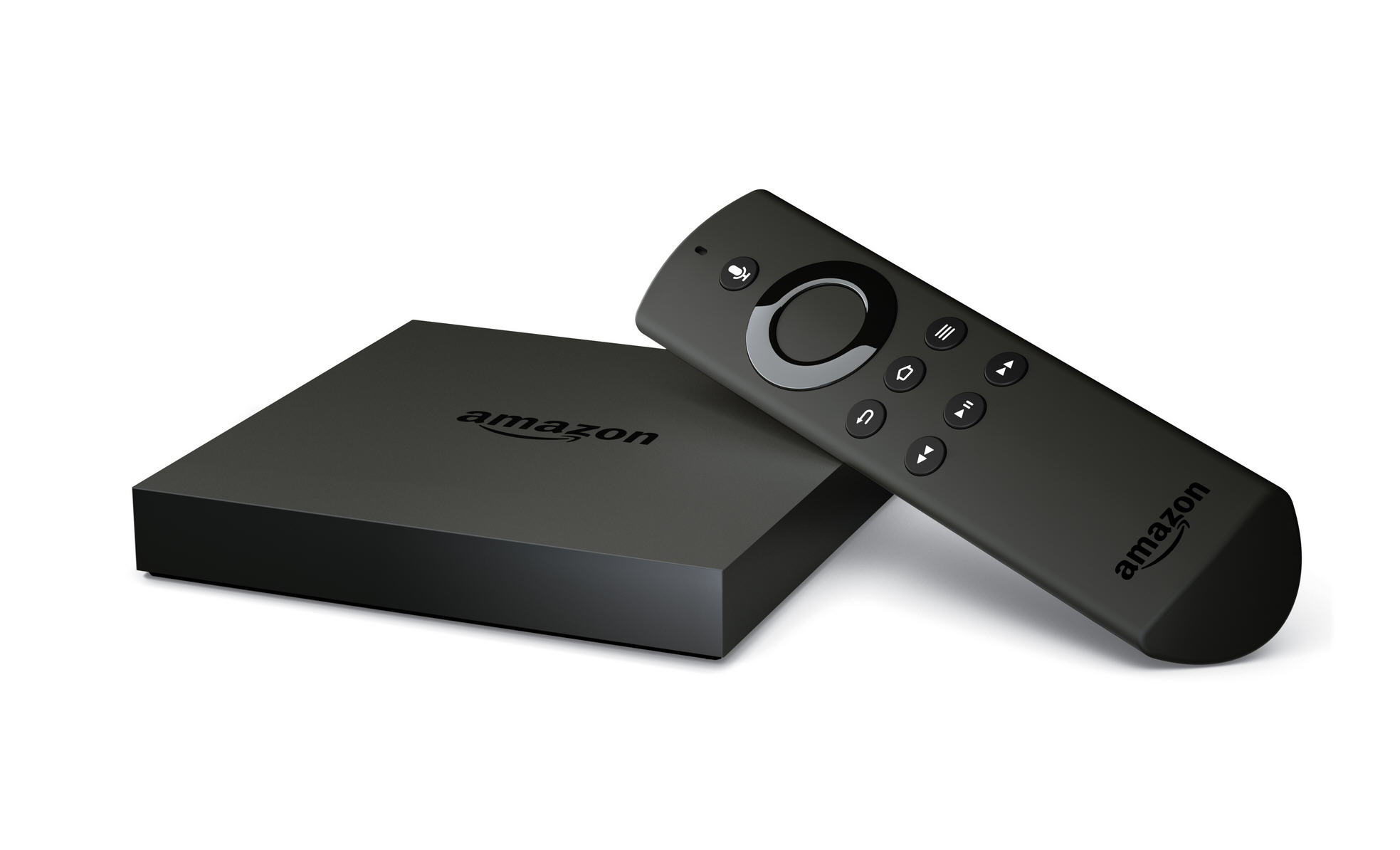
Clearly not fazed in the slightest by the new Apple TV, Amazon today introduces a new version of its own set top box, Fire TV. This new version is 75 percent more powerful than the older model, and offers Alexa support, and 4K Ultra HD streaming.
Alexa, the brain behind Amazon’s Echo, handles all voice requests, meaning you can now ask your Fire TV for music, information, weather, traffic, and more. There’s also a new Fire TV Stick with Voice Control.
SEE ALSO: Amazon announces three new tablets -- Fire HD, Fire, and Fire Kids Edition
Amazon Fire TV offers over 3,000 channels, apps and games which, according to the retail giant, is more than Apple TV, Roku, Chromecast, or any other streaming media player. It comes with 8GB of on-board storage, but you can boost this by another 128 GB via microSD, which is incredibly useful.
It’s available for pre-order today for $99.99 from www.amazon.com/fire-tv and will start shipping on October 5.
The new Fire TV Stick with Voice Remote is available for pre-order today for $49.99 at www.amazon.com/fire-tv-voice and will start shipping October 22.
"The team has packed an incredible amount of technology and innovation into a tiny package", said Jeff Bezos, Amazon.com Founder and CEO. "The new Fire TV includes 4K support, more processing power, Alexa integration, the largest selection, and exclusive features -- for less than $100. The new Fire TV Stick with Voice Remote brings voice search and Alexa integration for less than $50. These are powerful devices at incredible prices".
-

Amazon announces three new tablets -- Fire HD, Fire, and Fire Kids Edition
Publié: septembre 17, 2015, 3:57pm CEST par Wayne Williams

It’s been a while since we’ve seen new tablets from Amazon, but today the retail giant revamps its range with three new low-cost devices.
The all-new Fire HD has, according to Amazon, been redesigned from the "ground up for entertainment" and is available in 8 inch or 10.1 inch trims.
Amazon touts the following features:
- Thin and light industrial design -- at 7.7mm, Amazon’s thinnest tablets ever.
- Crisp and vivid HD display with over 1 million pixels; with a 16:10 widescreen aspect ratio, Fire HD 8 offers 15 percent more HD video viewing area, and Fire HD 10 offers 22 percent more HD video viewing area than similarly-sized tablets with a 4:3 aspect ratio.
- Powerful quad-core processor running at up to 1.5 GHz for fast app switching and fluidity.
- As measured in tumble tests, Fire HD is almost 2x more durable than the latest generation iPad Air.
- Up to 128GB of expandable storage via microSD -- enjoy even more videos, music, games, and photos while offline.
- Stereo speakers with Dolby Audio, which are custom-tuned for immersive, high-quality sound.
- Powered by the latest version of Fire OS -- Fire OS 5 "Bellini" -- with an updated user interface that is inspired by the beautiful layouts of high-quality magazines, making it fun to browse for your next movie, song, or book, or easy to pick up where you left off. Plus, Fire OS 5 includes hundreds of new and upgraded features, platform updates, and Amazon-exclusive services.
- First tablet with Amazon Underground, a one-of-a-kind app store experience where over $10,000 in apps, games, and even in-app items are actually free -- including extra lives, unlocked levels, unlimited add-on packs, and more.
- Have you ever forgotten to download a movie ahead of a flight? For Prime members, On Deck automatically keeps your Fire tablet current with popular Prime movies and TV shows, as well as Amazon Original Series, so you always have something good to watch. Importantly, On Deck only uses the available storage on your tablet, opportunistically in a special shadow mode. When you download something, On Deck automatically makes room for your selected content -- there’s no hassle of needing to clear out space yourself.
- The best reading experience on a tablet gets even better with Word Runner, a new feature designed to help you read faster -- one word at a time -- by bringing each word to the center of the screen to where your eyes are already focused. Word Runner gradually builds to your preferred reading speed, then algorithmically and automatically slows down for difficult words, punctuation, and paragraph breaks.
- For parents whose kids have outgrown Amazon FreeTime, Activity Center provides an easy way for them to see how their kids are spending time on their Fire tablet -- from how much time their kids spend playing games to which websites they visit.
- Mayday Screen Sharing lets an Amazon expert guide you remotely through any feature on your screen, available 24x7, 365 days a year -- for free.
- Access to over 38 million movies, TV shows, songs, books, magazines, Android apps and games, and more -- with free, unlimited cloud storage for all Amazon content.
- Amazon-exclusive features customers love, including ASAP, X-Ray, Second Screen, Family Library, Amazon FreeTime, Prime Video downloads, and more.
- Video chat with friends and family with the 720p front-facing camera; take photos and capture videos in 1080p full HD with the 5MP rear-facing camera.
- Free, unlimited cloud storage for all photos taken on Fire devices, automatically backed-up wirelessly.
- All-day battery life delivers up to 8 hours of reading, browsing the web, listening to music, and watching video.
"Fire HD combines an incredibly thin and light design with powerful performance to deliver the best entertainment experience available on a tablet", said Jeff Bezos, Amazon.com Founder and CEO. "A beautiful widescreen HD display, fast quad-core processor, expandable storage, Fire OS 5, exclusive features, and the Amazon content ecosystem of more than 38 million movies, TV shows, songs, books, apps, and games".
Fire HD 8 starts shipping September 30, but is available for pre-order from today with 8GB or 16GB of memory, priced from $149.99. It’s available in four color options: black, magenta, blue, and tangerine. Fire HD 10 is also available for pre-order beginning today with 16GB or 32GB of memory. It’s priced from $229.99 and is available in any color, so long as it's black. A white version will be offered shortly however.
SEE ALSO: Amazon revamps its TV products, adds support for 4K Ultra HD streaming and voice control

If you want something cheaper, there’s the new Fire tablet. Priced at just $49.99 (there’s also a "buy five, get one free" six-pack offered for $249.95), this has a 7 inch IPS display and front and rear cameras. The full list of features is as follows:
- Best display of any tablet in its price class -- Unlike other low-cost tablets that use TN displays, Fire’s 7" IPS display offers a great viewing experience with vivid and accurate color reproduction that can be seen at all angles.
- Quad-core 1.3 GHz processor -- 2x more processing power than Samsung Galaxy Tab 3 Lite at less than half the price; quickly and easily switch between apps, stream movies, and browse the web without waiting for your tablet to catch up.
- Durability -- As measured in tumble tests, Fire is almost 2x more durable than the latest generation iPad Air.
- Front- and rear-facing cameras -- Video chat with friends and family with the front-facing camera; take and share photos, and save them for later with free, unlimited cloud storage for all photos taken on Fire devices.
- Up to 128GB of expandable storage via microSD -- Enjoy even more videos, music, games, and photos while offline.
- All-day battery life -- Delivers up to 7 hours of reading, browsing the web, listening to music, and watching video.
- Fire OS 5 "Bellini" -- Includes an updated user interface that replicates the look and feel of a magazine, making browsing and searching for your content easier than ever -- what you want is just one tap away; plus, Fire OS 5 includes hundreds of new and upgraded features and platform updates, plus Amazon-exclusive services.
- Amazon Underground -- A one-of-a-kind app store experience where over $10,000 in apps, games and even in-app items are actually free -- including extra lives, unlocked levels, unlimited add-on packs, and more.
- Have you ever forgotten to download a movie ahead of a flight? For Prime members, On Deck automatically keeps your Fire tablet current with popular Prime movies and TV shows, as well as Amazon Original Series, so you always have something good to watch. Importantly, On Deck only uses the available storage on your tablet, opportunistically in a special shadow mode. When you download something, On Deck automatically makes room for your selected content -- there’s no hassle of needing to clear out space yourself. This feature will be available via a free, over-the-air Fire OS update in the coming months.
- Activity Center -- For parents whose kids have outgrown Amazon FreeTime, Activity Center provides an easy way for them to see how their kids are spending time on their Fire tablet -- from how much time they spend playing games, to which websites they visit. Activity Center will be available via a free, over-the-air Fire OS update in the coming months.
- World-class customer service and tech support -- Mayday Screen Sharing lets an Amazon expert guide you remotely through any feature on your screen, available 24x7, 365 days a year -- for free.
- Amazon-exclusive features -- ASAP, X-Ray, Second Screen, Amazon FreeTime, Family Library, Word Runner, and more.
- World’s best content ecosystem -- Access to over 38 million movies, TV shows, songs, books, magazines, apps, and games -- with free, unlimited cloud storage for all Amazon content.
"Today, we’re taking another step in our mission to deliver premium products at non-premium prices", Jeff Bezos says. "The all-new Fire features a quad-core processor, is incredibly durable, and is backed by the Amazon content ecosystem, the new Amazon Underground, and Amazon customer service with Mayday Screen Sharing. Fire sets a new bar for what customers should expect from a low cost tablet".
It’s available to pre-order from today and will start shipping from September 30.
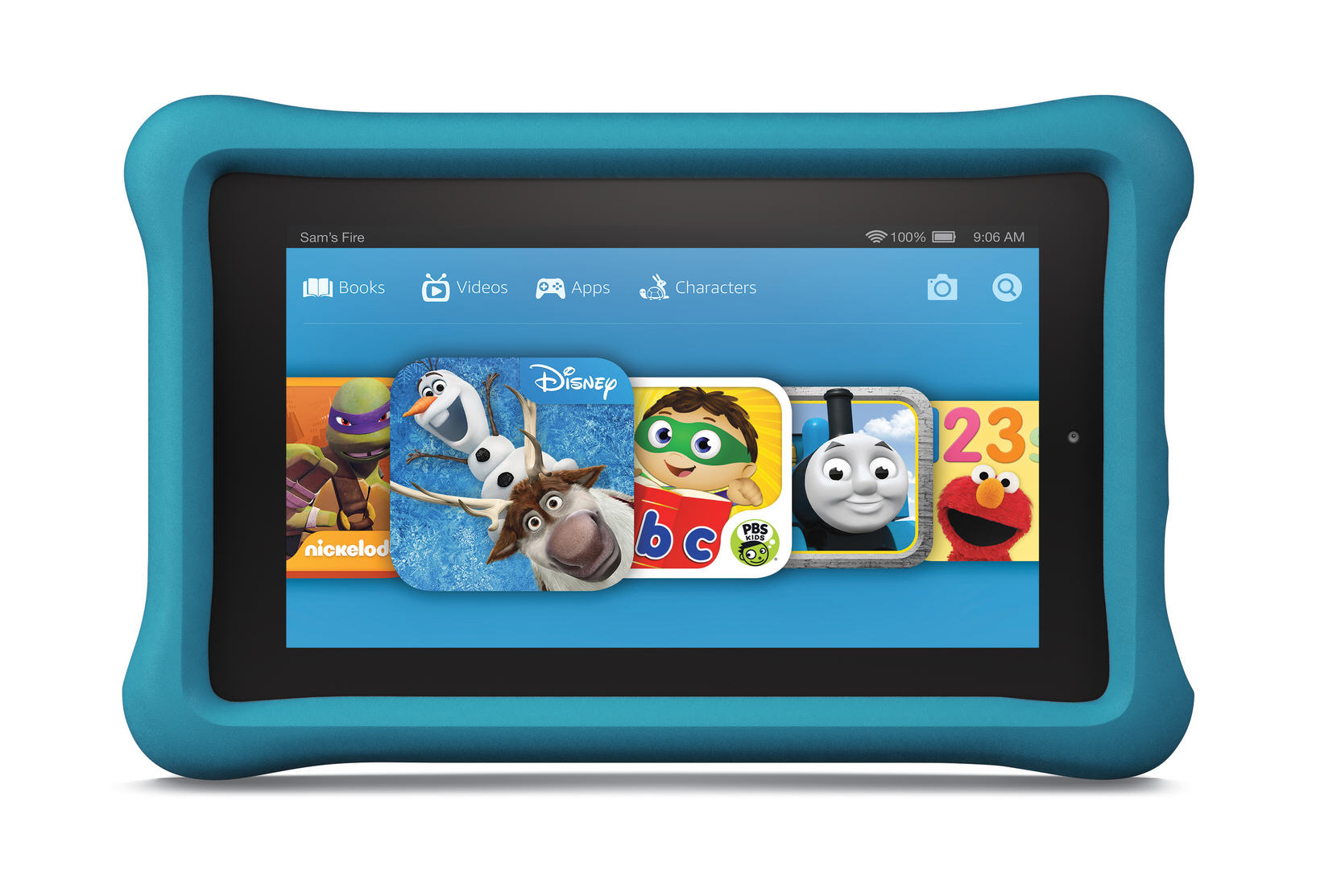
Finally, if you have children, there’s the Fire Kids Edition. This comes with a year of Amazon FreeTime Unlimited, a kid-proof case, and a 2-year worry-free guarantee. If your offspring manage to break it, return it and Amazon will replace it free of charge -- no questions asked.
Amazon says the tablet has a total value of over $200, but comes priced at $99.99.
"Last year, we introduced the first tablet built from the ground up for kids and their parents -- and customers loved it", said Peter Larsen, Vice President, Amazon Devices. "With the new Fire Kids Edition we’ve added more great content and features for parents and kids while lowering the price. For under $100 you get a new Fire tablet, a year of FreeTime Unlimited with over 10,000 books, videos, educational apps, and games, a new web browser with access to more than 20,000 age-appropriate YouTube videos and websites, and a 2-year worry-free guarantee".
Like the other new tablets this will ship from September 30 and can be pre-ordered now from here.
-

Bad news for Apple Watch owners, watchOS 2 won't be released today after all
Publié: septembre 16, 2015, 5:45pm CEST par Wayne Williams
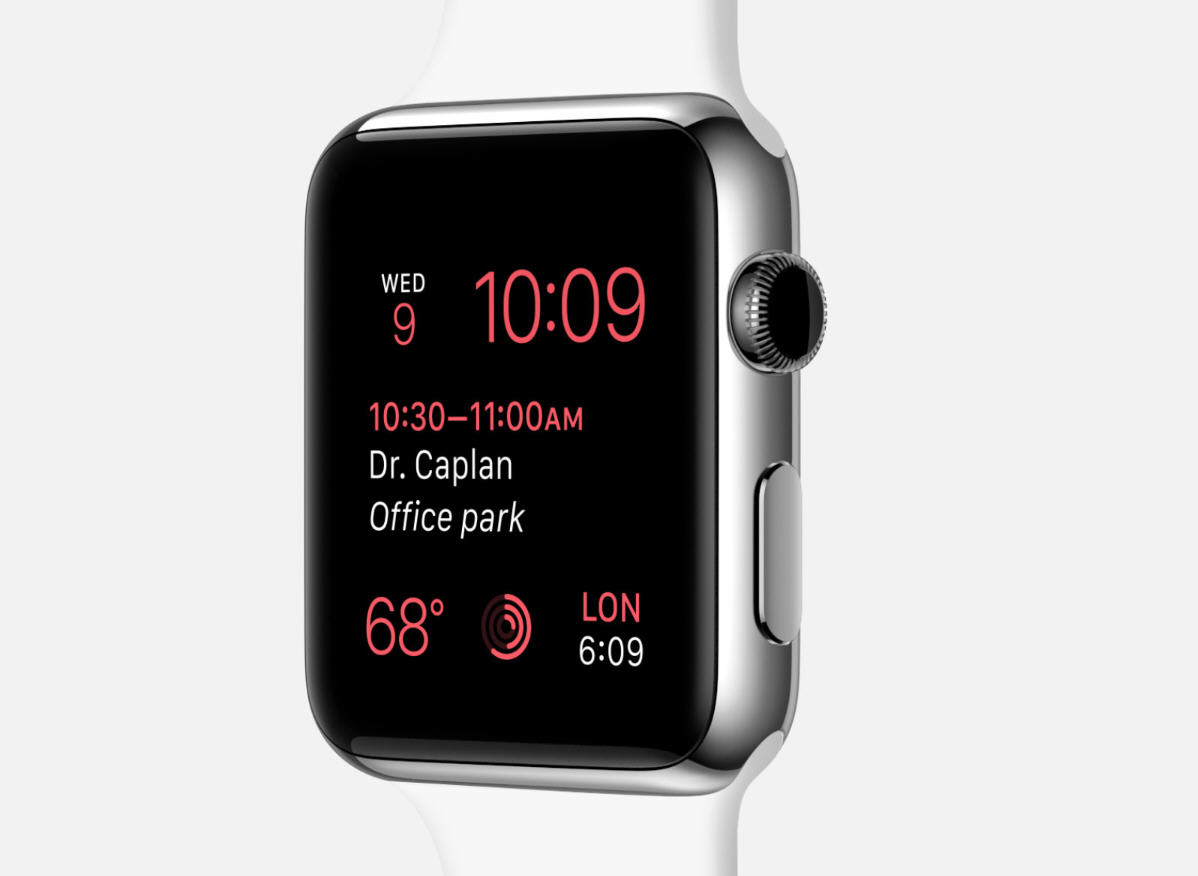
As an Apple Watch owner I’ve been excitedly awaiting the arrival of the next generation of watchOS for my device. I really like Watch, but it’s currently fairly limited. The updated OS gains support for native apps (you’ll be able to run apps on the Watch not just mirroring them from your iPhone) and there are new communication features, improved Siri functionality and additional faces to look forward to as well.
Unfortunately, while watchOS 2 was set to be made available later today, the discovery of a major bug has scuppered those plans.
While there’s no word on what the bug is, it’s evidentially concerning enough for Apple to push back the roll out.
All we know is what Apple has made public in a statement:
We have discovered a bug in development of watchOS 2 that is taking a bit longer to fix than we expected. We will not release watchOS 2 today but will shortly.
Since it’s just the one issue that’s holding things up, it’s likely the updated OS will make an appearance in the next few days or so, depending on how difficult the bug proves to squash.
-

Happy birthday Mario! Nintendo's iconic game character turns 30 [Infographic]
Publié: septembre 11, 2015, 9:19pm CEST par Wayne Williams
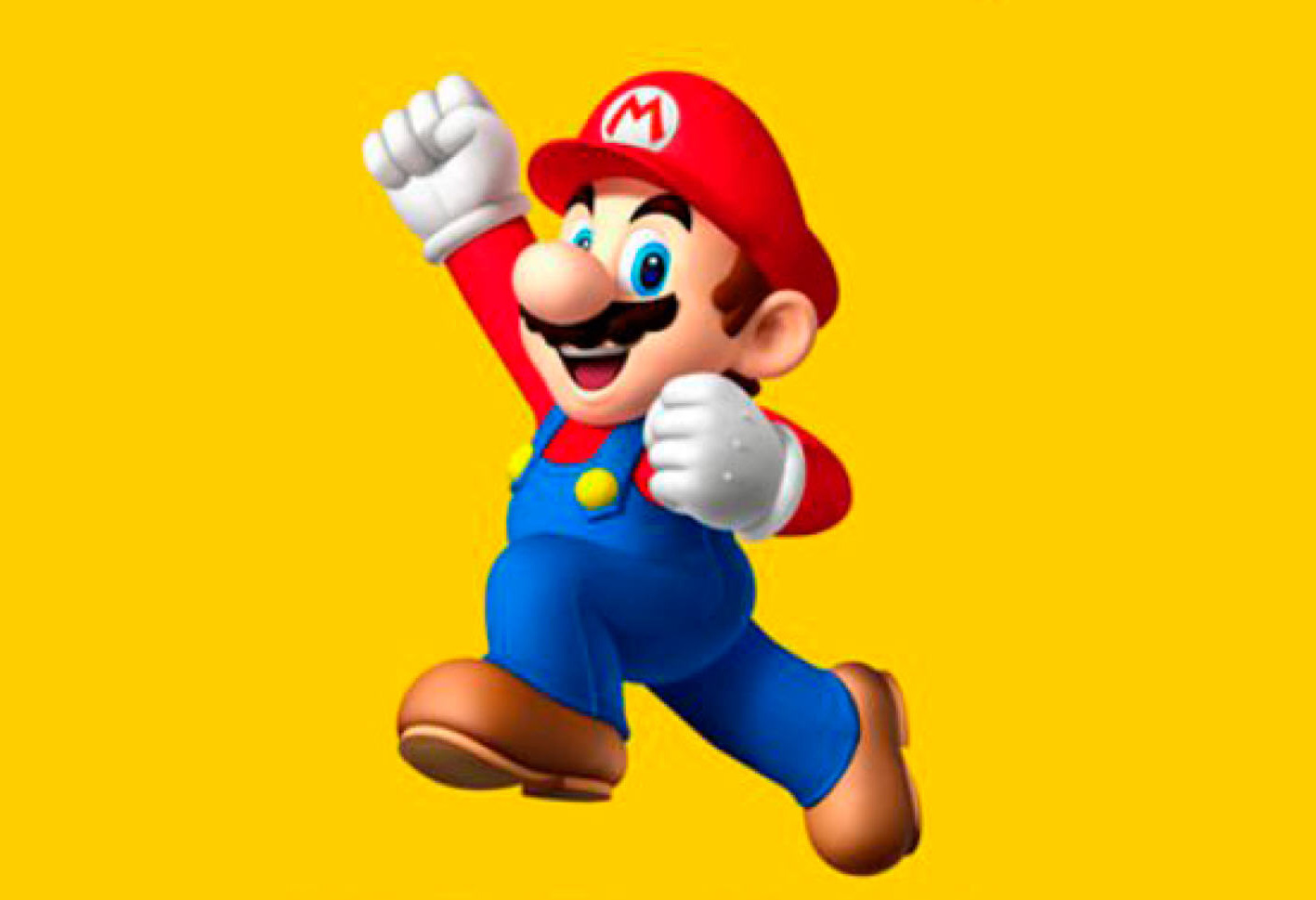
30 years ago today, iconic Italian plumber Mario made his first appearance in the legendary Super Mario Bros.
Created by Shigeru Miyamoto, Mario remains Nintendo’s most enduring -- and recognizable -- creation, and while the hardware his games appear on might have changed considerably over the past three decades, Mario himself is still the same lovable character he’s always been.
Whether you’re a fan of Mario, or not, you will know of him, and be familiar with at least some of the many games he’s appeared in. But there’s probably quite a lot you don’t about Nintendo’s most famous character, including that he’s held numerous jobs in his 30 years. Aside from being a plumber he’s been a soldier, doctor and even a boxing referee.
You probably also don’t know that in Japan Mario was originally called simply Jumpman, or Mr. Video. It was someone at Nintendo of America who actually coined the name Mario.
HalloweenCostumes.com has put together a fun infographic detailing the story behind Mario as told in the words of creator Shigeru Miyamoto.
Are you a Mario fan? Share your memories of the plumber and his games in the comments below.

-

Remove unwanted Windows 10 upgrade files from Windows 7 and Windows 8.x
Publié: septembre 11, 2015, 6:56pm CEST par Wayne Williams
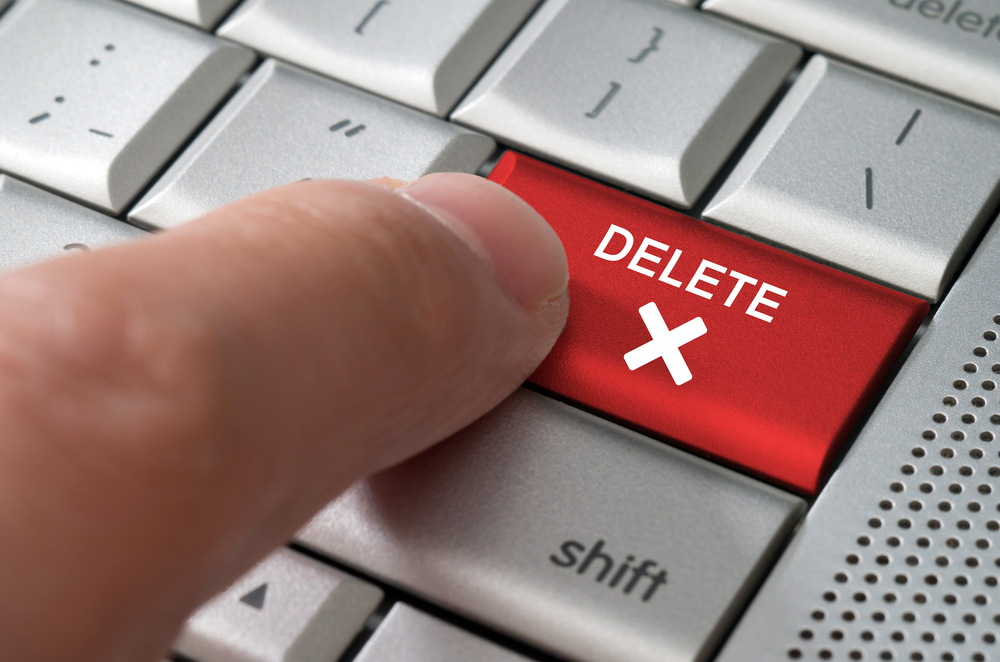
Microsoft has reportedly been downloading Windows 10 installation files on to computers running Windows 7 and 8.x, regardless of whether the users plan to upgrade to the new OS or not.
If you’re thinking of making the switch, and have requested an upgrade, that is fair enough. But if you’re more than happy to stick with your older OS for now, you might not be too happy about Microsoft cluttering up your hard drive with junk install files you don’t want. Fortunately, removing these files is easy enough.
Browse the root of your system drive, and you may find one or two sizable directories -- $Windows.~BT, and $Windows.~WS. These are hidden folders that contain the Windows install files (make sure Windows is set to show hidden files if the folders aren't visible). While you can just delete large folders, the best way to remove them and regain space is by using the built in Disk Cleanup tool.
Click Start and search for Disk Cleanup. Right-click the application that appears, and select Run as administrator. Select the drive you want to clean up -- this should be your system drive -- and click OK.
Click on Clean up system files, and select the drive again. In the list you’ll see Temporary Windows installation files. If this contains a sizable number of files, select it and click OK to remove the contents. This will clean out everything in the $Windows.~BT folder, but not in the $Windows.~WS directory (Disk Cleanup doesn’t target this particular folder at the moment). You can delete it manually though.
As for preventing the files being downloaded again, go to Start > Control Panel > Programs > Uninstall or change a program. Click View installed updates on the left. Use the search box to locate the following updates: KB3035583, KB2952664, and KB3021917 (Windows 7) or KB3035583 and KB2976978 (Windows 8). Right-click each one and select Uninstall. When done, go to System and security in the Control Panel, and select Windows Update > Check for updates. Right-click each of the above updates in turn and select Hide update.
Image Credit: Duc Dao / Shutterstock
-

Upgrade to Windows 10 and win a trip to New York
Publié: septembre 11, 2015, 4:45pm CEST par Wayne Williams

If you haven’t already upgraded to Windows 10, Microsoft has another incentive for you to make the switch. The tech giant is offering upgraders the chance to win a trip for two to New York, with flights and hotel accommodation included.
The competition is to celebrate the grand opening of Microsoft’s flagship store and the winner will have front of line access to the store, and also VIP concert tickets with a meet and greet with the (as yet unnamed) band at the grand opening concert. They’ll also receive Microsoft hardware including Surface Pro 3, Xbox One and Microsoft Band.
So what do you have to do to enter the competition? Simply upgrade to Windows 10, and submit your online entry using the form here. Share on social media and you’ll get additional entries.
The competition is only open to residents of the United States (or D.C.) and Canada (excluding Quebec), who are 18 years or older.
To enter online you need to be on Windows 7, 8 or 8.1 at start of promotion and upgrade to Windows 10 during the promotion period.
The sweepstake ends on the 30 September and you can view the official rules here. [PDF]
-

How to find the wallpapers and lock screen images in Windows 10
Publié: septembre 11, 2015, 2:20pm CEST par Wayne Williams

I quite like the look of Windows 10, and the images that come with it, but like all previous versions of Microsoft’s operating system it’s easily customizable.
Changing the look of the wallpaper and lock screen is done through Start, Settings, Personalization, and you can spice things up with your own photos. But what if you want to view the default images? Windows 10 stores them in a less-than-obvious place.
To find the wallpaper and lock screen images, open File Explorer and go to C:\Windows|web.
You’ll see 3 folders there:
- 4K
- Screen
- Wallpaper
4K is where you’ll find the default Windows 10 wallpaper. Rather than just the one image there are nine variations in various resolutions.
Screen contains all of the lock screen images and Wallpaper is where you’ll find all of the available wallpapers.
-

iOS 9 gets an official release date
Publié: septembre 9, 2015, 9:31pm CEST par Wayne Williams
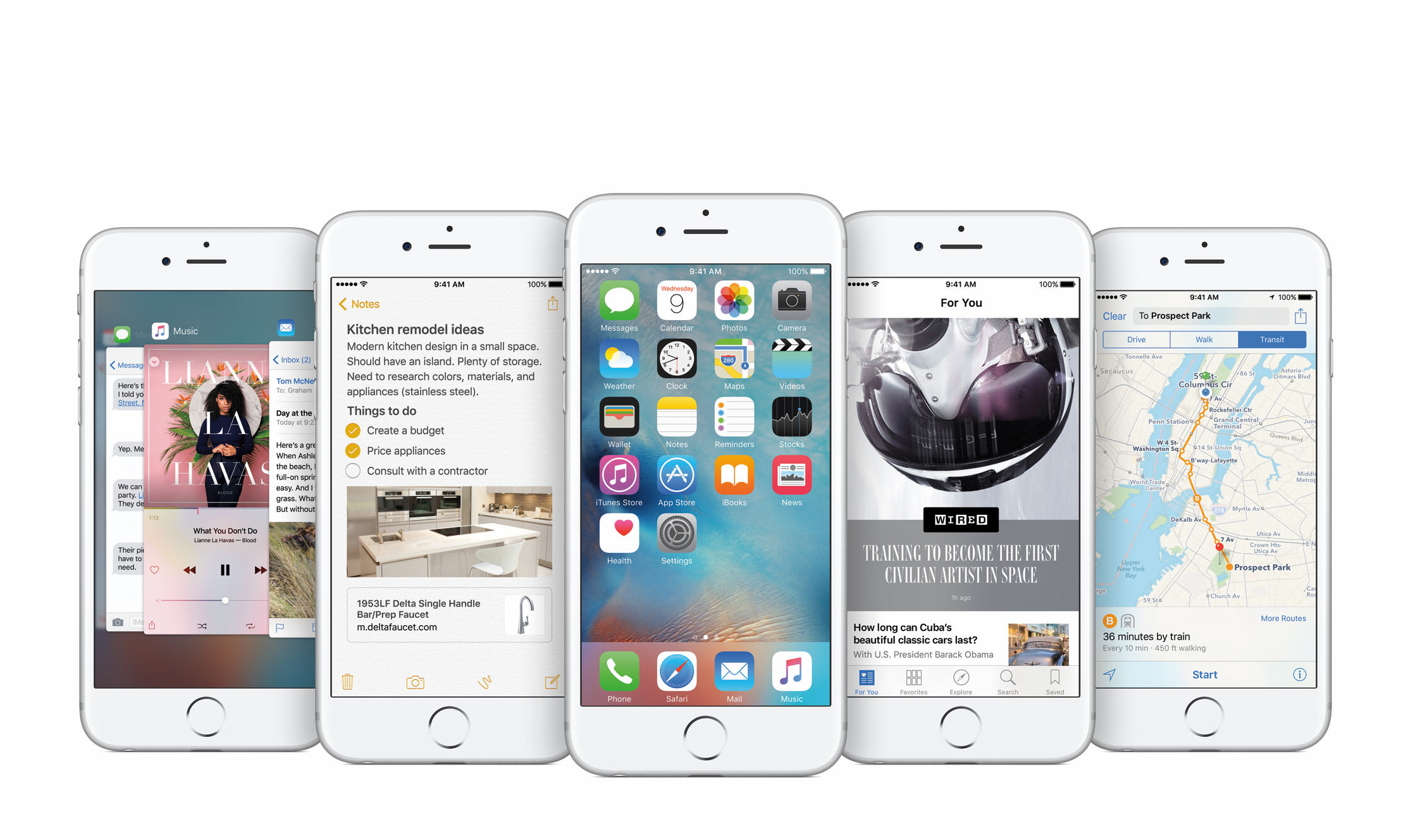
The next version of Apple’s mobile operating system was announced three months ago, and developers and brave beta testers have been able to try it for a while. What we didn’t know -- until today -- was when the latest iteration would be available to the world at large.
If you’ve been waiting for iOS 9 the great news is you don’t have too much longer to go. The updated Apple OS will be available to iPhone, iPad and iPod touch users from September 16.
"iOS 9 is packed with intelligence that makes every experience with iPhone and iPad even more powerful -- Siri can do more than ever and new proactive assistance helps you get more done before you ask, all while protecting users' privacy," said Craig Federighi, Apple’s senior vice president of Software Engineering. "With iOS 9 we focused on strengthening the foundation of iOS with a deep focus on quality, and with the help of more than one million users who participated in our first ever public beta program, we’re excited to release the best version of iOS yet".
The biggest addition is multi-tasking on the iPad. Apple lists the following multi-tasking functions:
- Slide Over lets you simultaneously work in a second app without leaving the one you’re in and easily switch between your apps.
- Split View allows you to view and interact with two apps at the same time, side by side, and resize your view to prioritize one app over another.
- Picture-in-Picture lets you continue a video or FaceTime call while using your favorite apps.
- Typing is faster and easier with an all-new Shortcut Bar that displays convenient editing tools, and new Multi-Touch gestures make it even easier to select, edit and move text.
There are also big changes to Notes, which has been redesigned, Maps, which offers support for metropolitan transit systems and schedules in select cities, News, and Apple Pay.
Battery optimization promises users an extra hour of battery life, software updates require less space to install, and Install Later will allow updates to be delayed until a device is idle.
iOS 9 will run on iPhone 4s and later, iPod touch 5th generation and later, iPad 2 and later and iPad mini.
-

Oh yes, there's a new iPad mini too
Publié: septembre 9, 2015, 8:28pm CEST par Wayne Williams
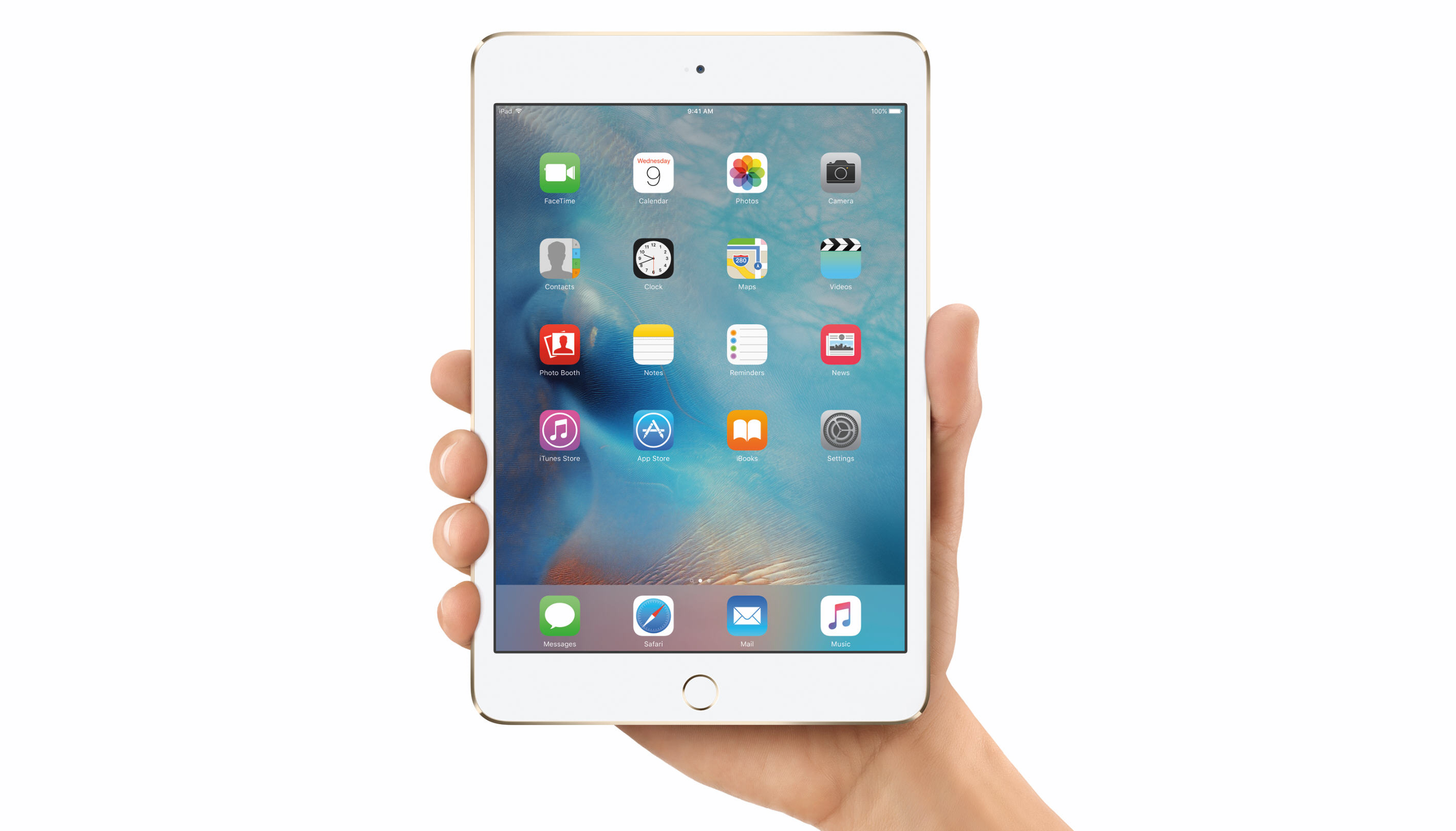
The big iPad news coming out of Apple today was undoubtedly the new super-sized iPad Pro, but it wasn’t the only iPad mentioned. While there’s no sign of a successor to last year’s iPad Air 2 (rumors say that’s not expected until next year) Apple did mention -- in passing -- a new iPad mini 4.
This is the first update of the smallest iPad in nearly two years, and it’s been worth the wait.
The internals have been upgraded to match those found in the iPad Air 2 -- so it will be powered by the speedy A8 processor. The rear camera has been upgraded to 8MP too, which is probably the same camera as in the larger tablet.
It will be priced from $399 for the 16GB model and available in the now standard colors -- silver, gold and space gray. The iPad mini 4 is thinner too, if that’s the sort of thing that interests you, and weighs just 0.65 pounds.
-

The rumors were true -- Apple iPad Pro is real and priced from $799
Publié: septembre 9, 2015, 7:54pm CEST par Wayne Williams
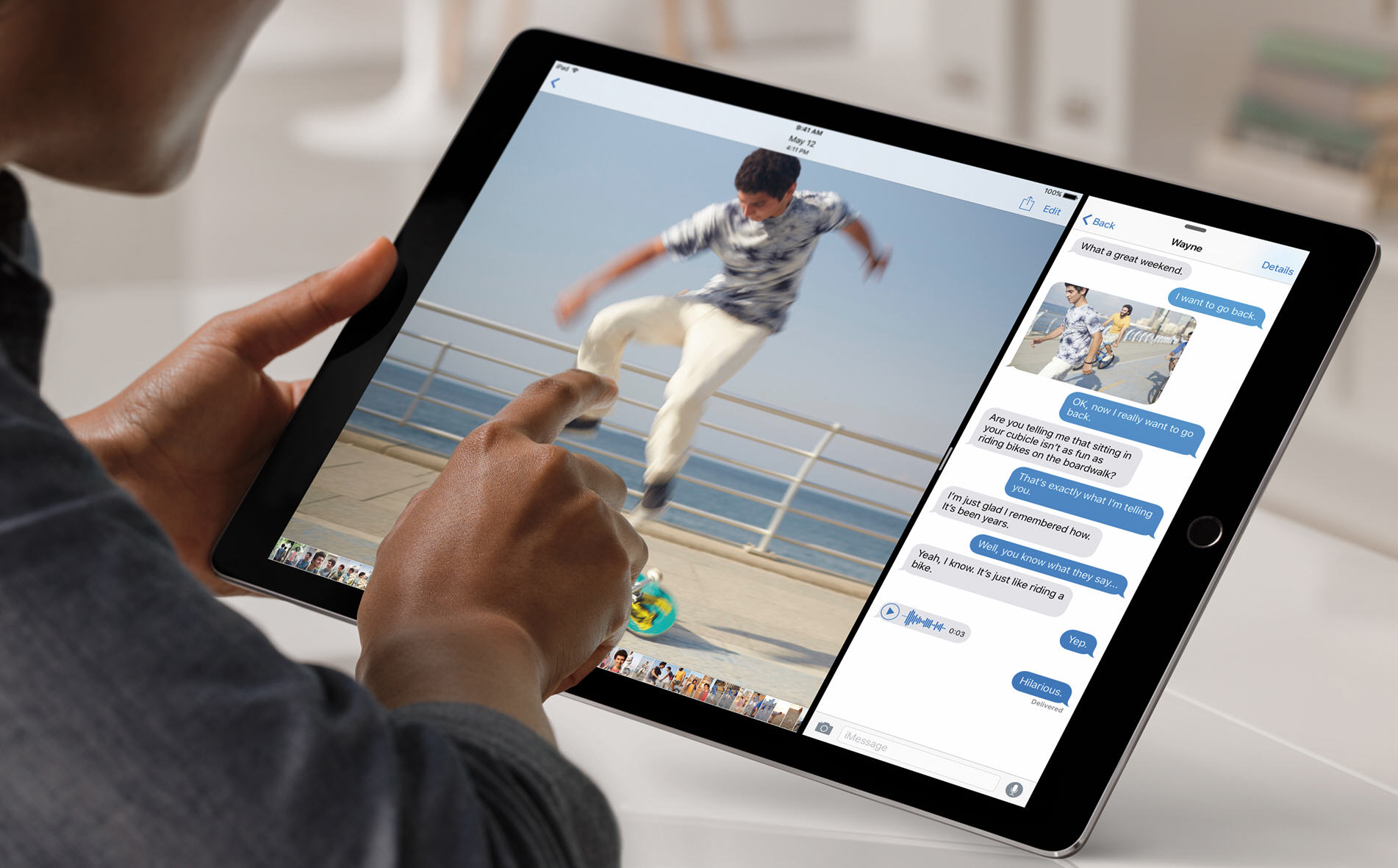
There have been rumors of a super-sized iPad for ages now, but at today’s Apple event Tim Cook finally took the wraps off the iPad Pro -- the most advanced (and largest) iPad ever.
It's a sizable tablet -- 12.9 inches on the diagonal. Cleverly the width of the iPad Pro is exactly the same as the height of the iPad Air, which will allow you to run iPad apps with space to spare. Handy since iOS 9 allows for multi-tasking.
The screen is 2,732 x 2,048 pixels and 5.6 million pixels, which is more than a Retina MacBook Pro.
The iPad Pro, which weighs 1.57 pounds and is 6.9mm thick (just 0.8 mm thicker than the iPad Air 2), is powered by Apple's latest SoC (system on a chip), the third-gen 64-bit A9X. This has double the memory bandwidth and graphics performance as in last year's iPad Air 2's A8X. Apple claims that the iPad Pro is faster than 80 percent of the portable PCs which shipped in the past year, an impressive claim.
The iPad Pro features a 8MP pixel front and Facetime rear camera, four speakers (two at the top and two at the bottom). There’s a Lightning port, a headphone jack, side buttons, TouchID, Bluetooth and Wi-Fi. And because this is a "Pro" device there will be a cellular model with LTE.
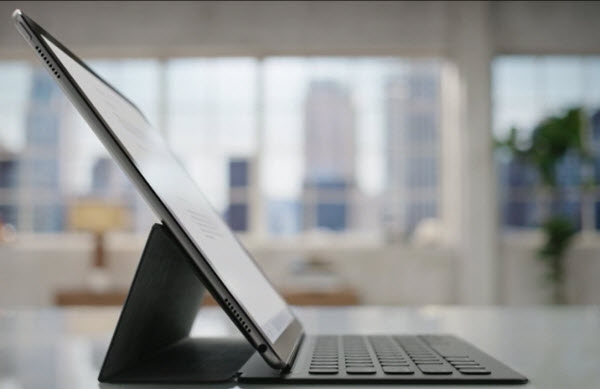
To go with the iPad Pro Apple has designed some peripherals -- a keyboard, which functions like a case (Apple obviously liked the look of Surface Pro 3’s touch keyboard) and a stylus called the Apple Pencil (yes, really).
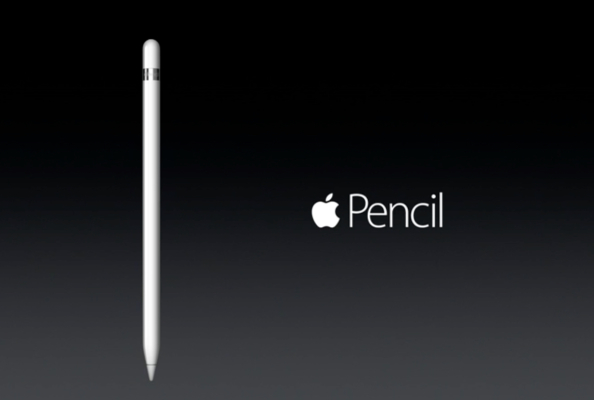
To sell the appeal of the iPad Pro Apple invited both Microsoft and Adobe on stage, which was a genius move.
The new tablet comes in three finishes -- silver, gold and space gray. As for pricing, the 32 GB model will set you back $799, the 128 GB version is $949 and the 128 GB version with Wi-Fi and Cellular is $1079. The extras are $169 for the keyboard, and $99 for the Pencil.
The iPad Pro will be available to buy from November.
-

How to install Windows Media Center on Windows 10
Publié: septembre 9, 2015, 5:45pm CEST par Wayne Williams
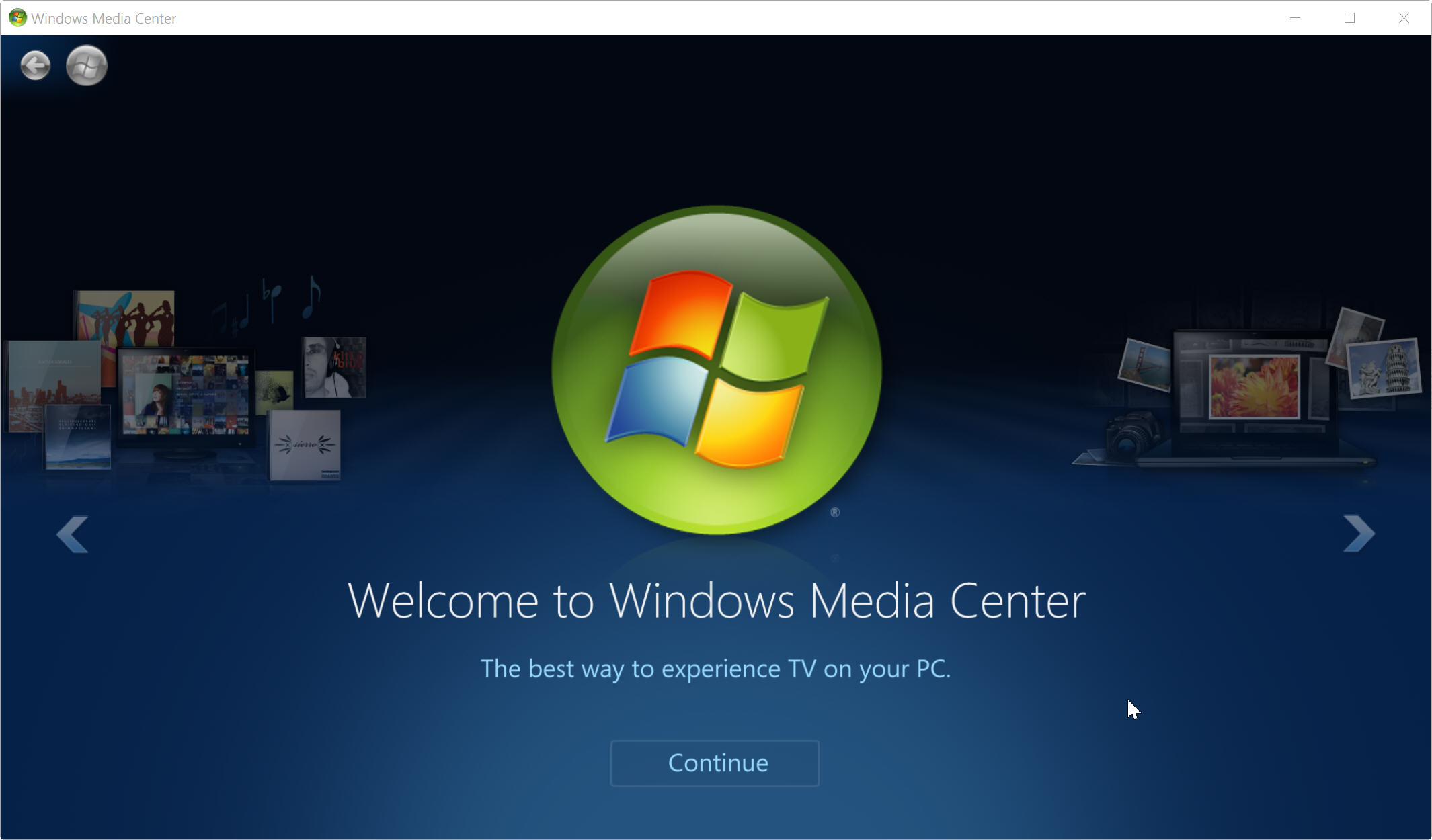
Microsoft dropped Windows Media Center from its new OS, citing "decreased usage" as the reason it would no longer be available. In its place the software giant has released a DVD Player, but this is only free to some Windows 10 users. For others it costs $14.99, which is crazy considering it’s incredibly basic and there are much better free tools available.
If you miss Windows Media Center, and the available alternatives -- such as Kodi -- aren’t filling the gap for you, the good news is you can, with a little trickery, install Windows Media Center on Windows 10.
The My Digital Life Forums has come up with the goods. All you have to do is:
- Download Windows Media Center from here.
- Extract the folder to your hard drive (it must be saved to your system drive) and open it.
- Right-click _TestRights.cmd and choose to Run as administrator.
- Next right-click Installer.cmd and Run as administrator. (There’s also an uninstaller here).
- Press any key to exit when prompted and then search for Media Center.
If it doesn't install correctly, try rebooting your PC and repeat the process.
You’ll find the app under Windows Accessories in the Start menu, but you can pin it to the taskbar if you require quick access.
I’ve installed Windows Media Centre in Windows 10 without problems and it works very well. If you get a decoder error when trying to play live TV you will need to install the LAV Filters from here.
-

How to watch Apple's iPhone 6s launch live on any device including Windows, Linux and Android
Publié: septembre 9, 2015, 4:28pm CEST par Wayne Williams
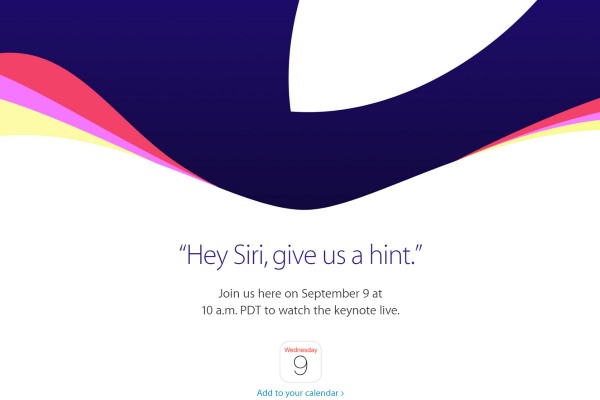
In just a few hours Apple will be taking the wraps off its latest smartphones, iOS 9, and possibly a new game-centric Apple TV. The event is scheduled to start at 10am PDT/6pm BST, and as always it will be streamed live so you can tune in at home or (maybe) work.
Apple likes to preach to the faithful, so there are the usual restrictions in place. Live streaming the event requires Safari 6.0.5 or later on OS X v10.8.5 or later; Safari on iOS 7.0 or later. Streaming via Apple TV requires second- or third-generation Apple TV with software 6.2 or later. This year, there’s another way to watch as well -- using Microsoft Edge on Windows 10.
Assuming you have what's required, you can watch the keynote live here.
If you have a Windows PC running an earlier version of Microsoft’s OS, a Linux box or an Android phone or tablet, you can still watch the event, but you’ll need VLC Media Player installed. Assuming you do, open it, and click on "Media" at the top left. Go to "Open Network Stream" and paste in the network URL of the live Apple event which is:
http://p.events-delivery.apple.com.edgesuite.net/1509pijnedfvopihbefvpijlkjb/m3u8/hls_mvp.m3u8
This link won’t go live until the event begins.
We'll also be live blogging the event, so even if you can't tune in to the live stream you'll be able to keep up with the news from Apple.
Feel free to share your comments about what Apple is showing off in the comments below.
-

Raspberry Pi now has an official touchscreen display
Publié: septembre 8, 2015, 11:26am CEST par Wayne Williams
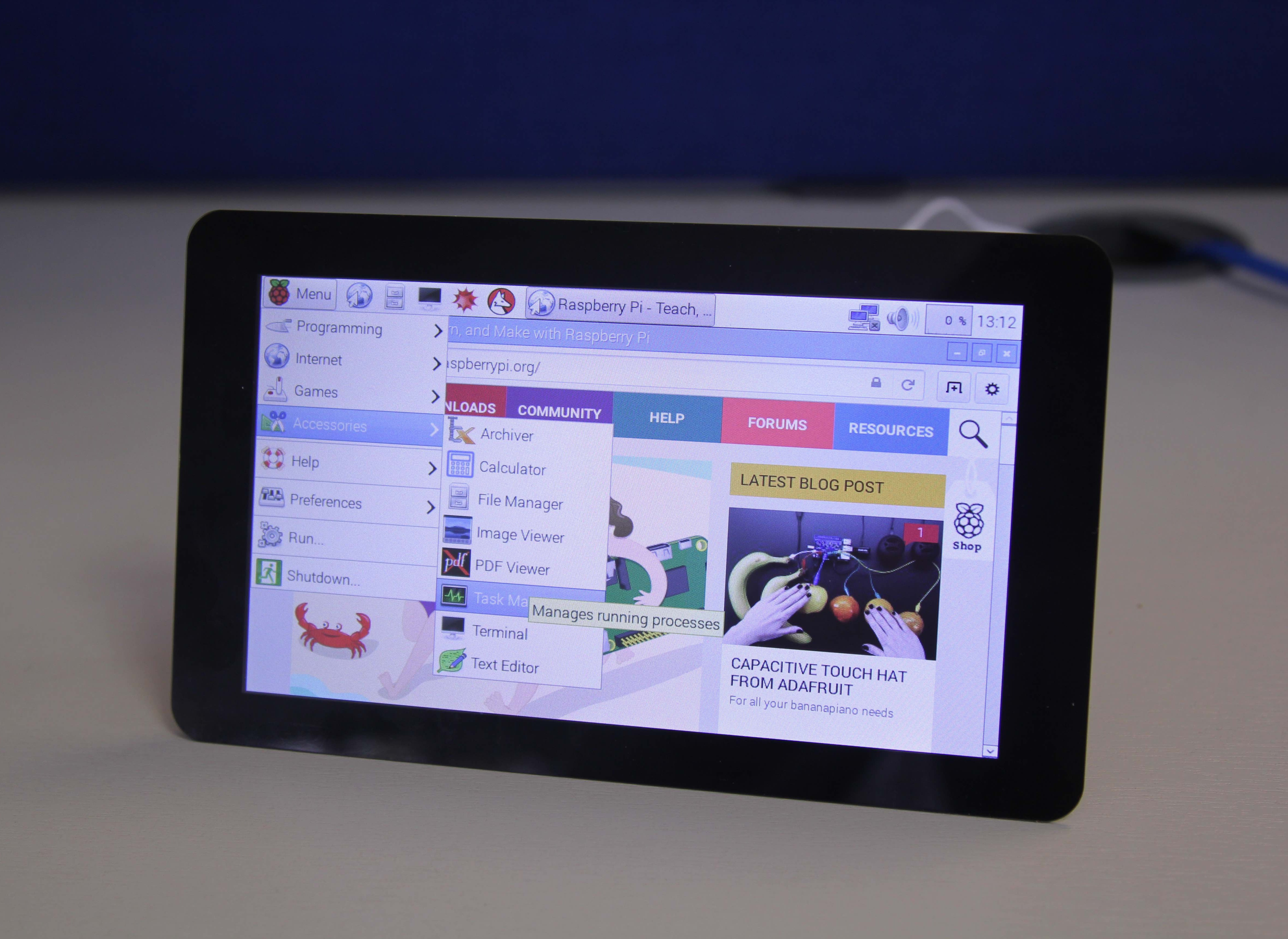
The Raspberry Pi is very low cost, but all you get for your money is the actual bare-bones device itself. You will still need to add an SD card, cables, a USB keyboard and mouse, and a screen before you can use it -- some of which you will likely already have lying around at home.
There are numerous add-ons available to buy too, including an official case, and today the Raspberry Pi Foundation introduces one more addition to its range -- a superb (and affordable) 7 inch touchscreen display.
Priced at $60/£48, the 800 x 480 screen only requires two connections to the Pi -- power from the GPIO port and a ribbon cable that connects to the DSI port. The Pi sits behind the screen, and it’s a really well thought out design.
Drivers, which support 10-finger touch, and an on screen keyboard, will be integrated into Raspbian OS, so just grab the latest version and you’re good to go.
The technical specs of the new screen are as follows:
- 7" Touchscreen Display.
- Screen Dimensions: 194mm x 110mm x 20mm (including standoffs)
- Viewable screen size: 155mm x 86mm
- Screen Resolution 800 x 480 pixels
- 10 finger capacitive touch.
- Connects to the Raspberry Pi board using a ribbon cable connected to the DSI port.
- Adapter board is used to power the display and convert the parallel signals from the display to the serial (DSI) port on the Raspberry Pi.
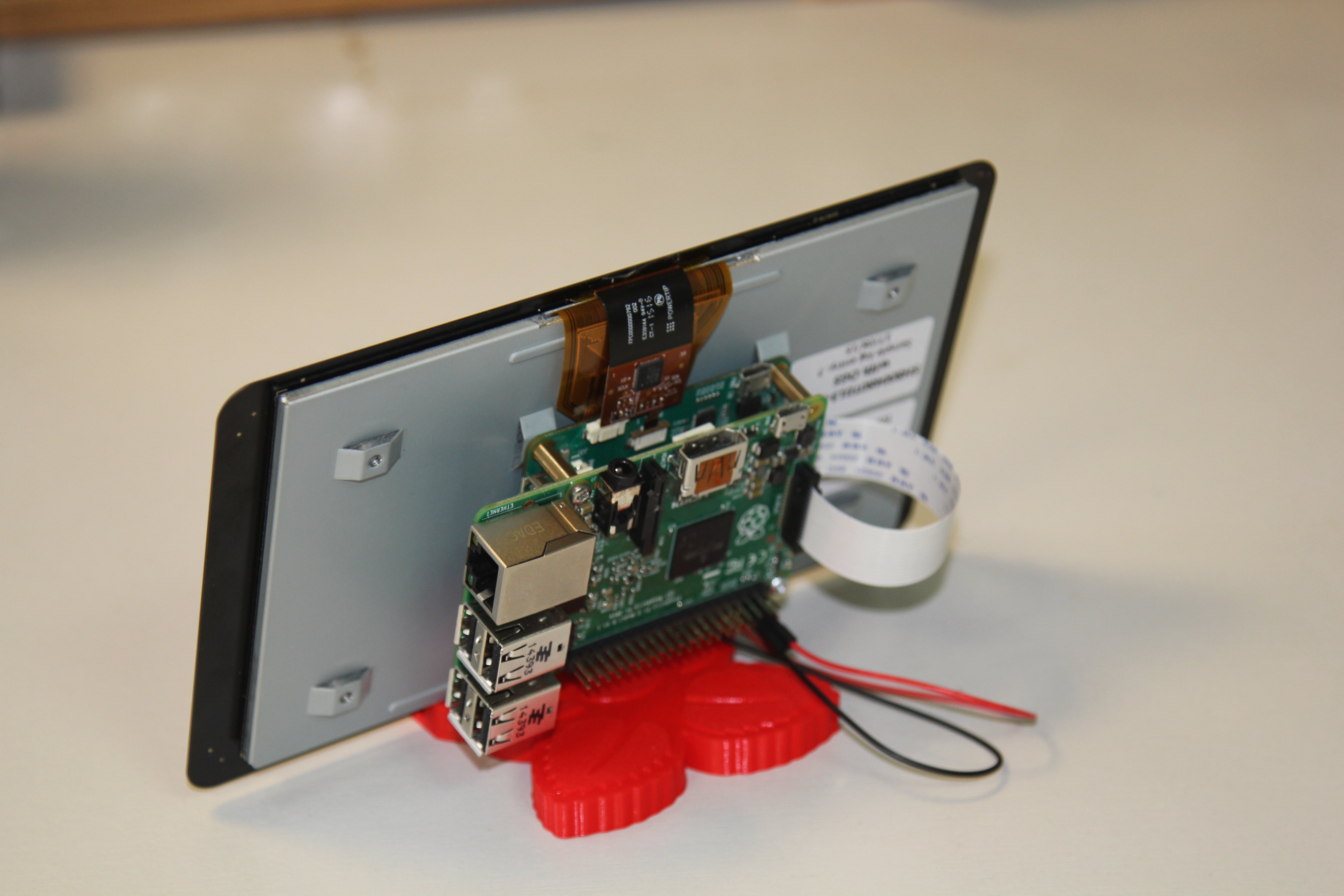
The display is compatible with all three of the latest Pi models -- the Raspberry Pi Model A+, Raspberry Pi Model B+, and Raspberry Pi 2 Model B. If you have an older model, you might want to think about upgrading to a new one. It won’t break the bank after all.
You can find out more about the screen here, and buy it from the Swag Store, RS Components/Allied Electronics and Premier Farnell/Newark. It will be available at other retailers in due course.
-

How to print to PDF directly in Windows 10 -- no software required
Publié: septembre 7, 2015, 5:07pm CEST par Wayne Williams
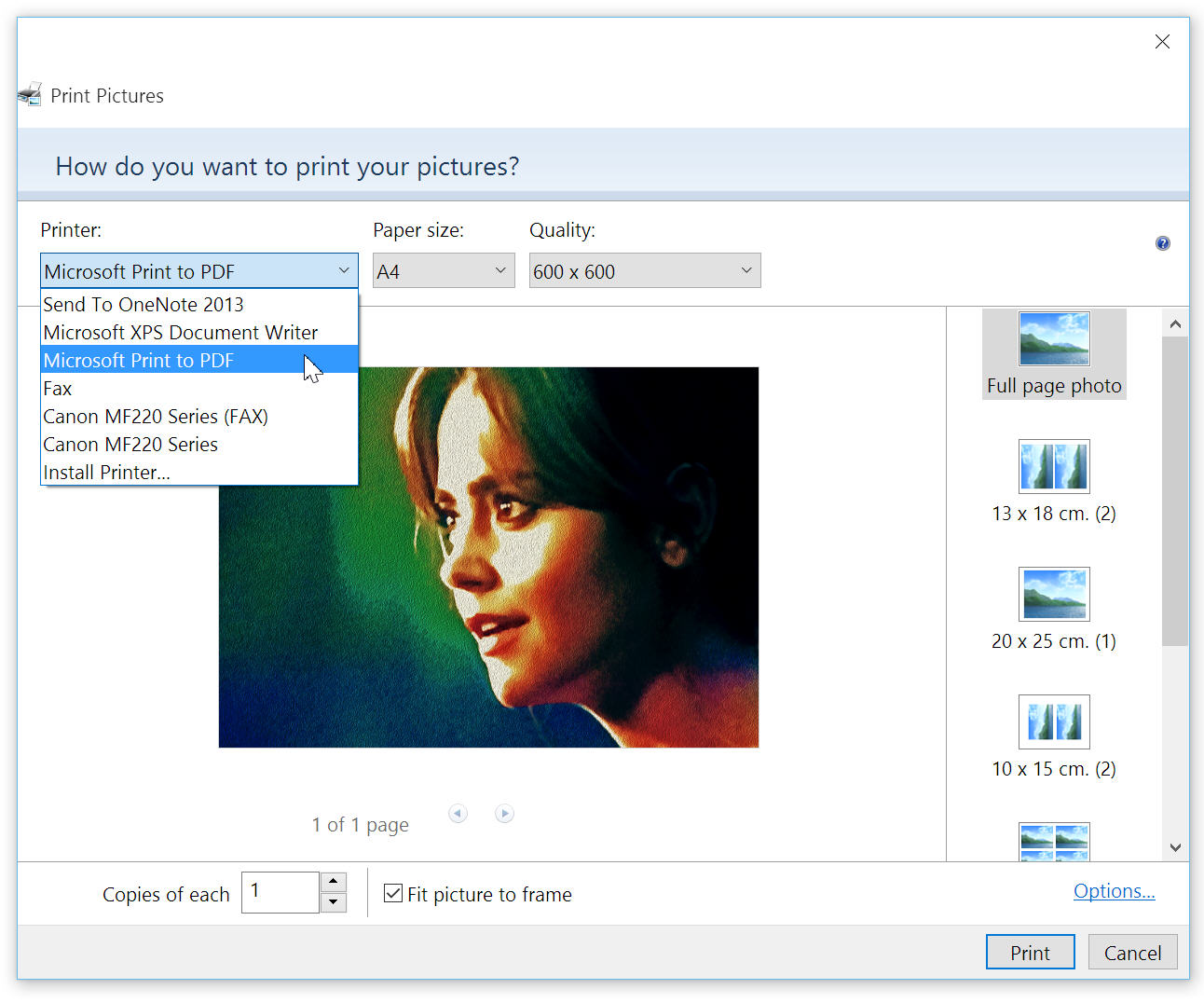
PDF is a great file format because it shows a document exactly how it’s intended to look. There’s no shortage of tools you can use to create your own PDFs, and if you have Microsoft Office installed you can even save documents and spreadsheets in that format via the Save As menu.
Windows 10 cleverly offers native PDF printing, so you can turn almost any document or image into a PDF without needing to install anything.
It’s very easy to use the feature -- just choose to print something and open up the list of printers. You will see Microsoft Print to PDF listed there. Select this, change any settings and click Print. Choose where to save the new PDF to, and give it a name.
If the Microsoft Print to PDF option isn’t listed, click Start and go to Settings > Devices > Printers & Scanners. Under Printers you should see Microsoft Print to PDF. If it isn’t there, open the Control Panel and select Programs & Features. Click Turn Windows features on or off in the left panel.
Check Microsoft Print to PDF, OK the change and exit the screen. Restart your PC and it should be available.
Photo Credit: IhorZigor / Shutterstock
-

Minority Report could one day be real, thanks to big data and predictive analytics [Q&A]
Publié: septembre 7, 2015, 2:51pm CEST par Wayne Williams

Everyday humans create 2.5 quintillion bytes of data, according to IBM. This data comes from virtually everywhere -- sensors used to gather environmental information, posts to social media sites, cell phone signals and more. In order to best determine how to put this data to use in meaningful ways, the science of analytics has changed (think: the amount of data that can be analyzed, the tools and methodologies that enable us to do so, etc.). Most importantly, companies can now be predictive based on data analytics, enabling them to better forecast demands and proactively prevent certain issues.
I spoke to Murali Nadarajah, Global Head of Big Data Analytics for Xchanging, a publicly listed multi-national business technology and services provider, about how organizations today are using predictive analytics, and how the ability to be predictive has -- and will continue -- to change the business landscape enabling the development of new approaches and products.
BN: Tell me a little bit about predictive analytics. How is it different from traditional analytics?
MN: Predictive analytics is like traditional analytics with a built-in lens into the future. The proliferation of things like social media and all-things-mobile have massively influenced the speed at which consumers make buying decisions and interact with brands. These forces have created an incredible amount of data, which best-in-class businesses are not only collecting and reporting on, but are identifying causal relationships between data points and thus, predicting future outcomes. And best yet is that there’s an incredible degree of accuracy in it.
BN: This all sounds very "Minority Report" -- the sci-fi movie based in the year 2054 where a specialized law enforcement team is able to arrest people for crimes they haven’t yet committed. Is that where we’re headed?
MN: We’re not there quite yet, but I can’t say it would be impossible in the future! That type of knowledge could possibly exist, and it would be provided by big data. Although being arrested for pre-determined crimes is still a ways off, there are a number of practical applications of predictive analytics that are in-play today.
BN: Can you tell us about some of those?
MN: Absolutely. Tonal analysis is an example I find particularly interesting: Historically, call centers have measured customer satisfaction based on metrics like average handling time, call abandon rate and customer surveys. With big data, we can actually listen to, and analyze, the tone of a customer’s voice over the course of a call. Based on this, we can gauge whether the customer called in angry and left the call happy, or if they started the call neutral and left unhappy, and so on. This is Tonal Analysis and, when it’s combined with existing customer care reports can provide a much higher level of preciseness that you wouldn’t have had with traditional reporting.
To take this one step further, Tonal Analysis becomes predictive when it’s used by industries like debt recovery. Debt collectors can call an individual, tell them how much they owe, for example, ask a few questions and then, based on the individual’s tone during the call, can predict the likelihood of recovering that debt. This allows the debt collector to focus their efforts on money they have a greater chance of seeing again.
BN: Interesting. Broadly speaking, how is the ability to predict changing the business landscape and how companies operate?
MN: There is an absolute plethora of data around us -- more so than ever before. For most companies, managing this data has become vital to building competitive advantage, sustaining and identifying new areas for growth, innovating and managing evolving customer demands. Businesses need to make quicker and more informed decisions to outpace competition, and those who can’t keep up will lose.
The ability to forecast future trends by drawing meaningful and engaging insights from past data has become a game changer for companies. Being able to more or less predict the future is changing how organizations strategize long term, manage customer care and find ways to stand out from the competition.
BN: If we’re already at the point of being predictive, how can analytics continue to evolve? Where does it go from here?
MN: Believe it or not, there is a level of analytics that goes beyond predictive, and that’s what is being called prescriptive analytics. This is the next stage of the analytics evolution and essentially automates a recommendation and steps to take to adjust or correct behavior. In other words, it goes a step further than predicting behavior, and tells you what to do about it.
This rung on the analytics latter -- along with predictive analytics -- is still somewhat nascent, and it’s worth pointing out with predictive that it’s illustrative of what might happen, not what will. So before "Minority Report" becomes reality, we can rest assured that we’re not yet living in a world where our decisions are being made by machines, but businesses have clearly gotten smarter about how they use data to be ahead of the curve, and what’s yet to come will most definitely be worth the wait.
-

How to disable Windows 10's Action Center
Publié: septembre 7, 2015, 12:38pm CEST par Wayne Williams
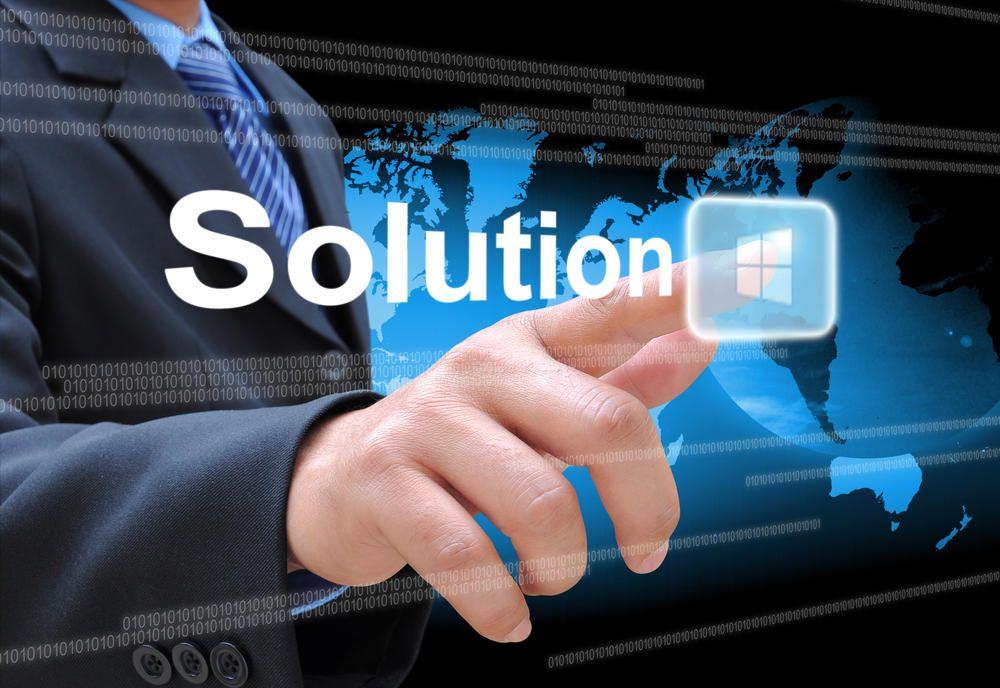
The Action Center in Windows 10 is a pretty handy addition. It displays past notifications from apps and your system -- if you miss a message from Windows when it pops up you can find out what it said in the Action Center. You can also access various quick actions there.
But if you have no need for the Action Center -- and to be honest I’ve hardly ever used it -- it can be disabled with a simple registry tweak.
As always, before making changes to the Windows registry you should create a system restore point so you can roll things back in the event of problems. When you’ve done that, follow these steps.
- Click Start, type regedit and hit Enter to open the Registry Editor.
- Navigate to HKEY_CURRENT_USER\SOFTWARE\Policies\Microsoft\Windows\Explorer
- Right-click in the right-hand pane and select New > DWORD (32-bit) Value. Call it DisableNotificationCenter.
- Double-click it and change the Value data to 1.
- Click on OK and exit the Registry Editor.
- Restart your PC and you’ll see the Action Center has been removed from the taskbar.
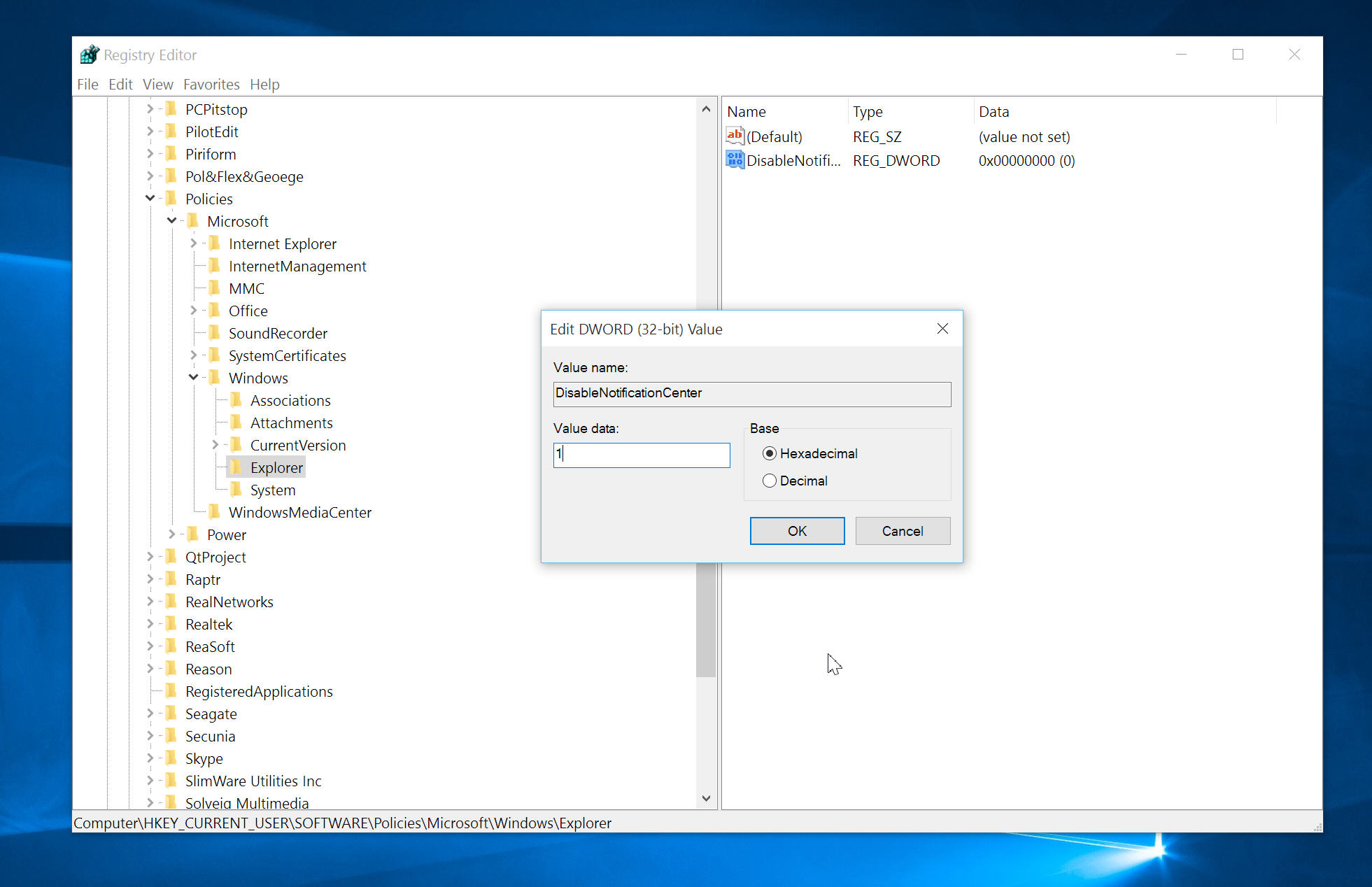
If you change your mind and want to get the Action Center back, simply change DisableNotificationCenter to 0 and restart your PC.
Photo Credit: twobee / Shutterstock
-

Master Windows 10 with these new 'How To' videos from Microsoft
Publié: septembre 4, 2015, 12:10pm CEST par Wayne Williams
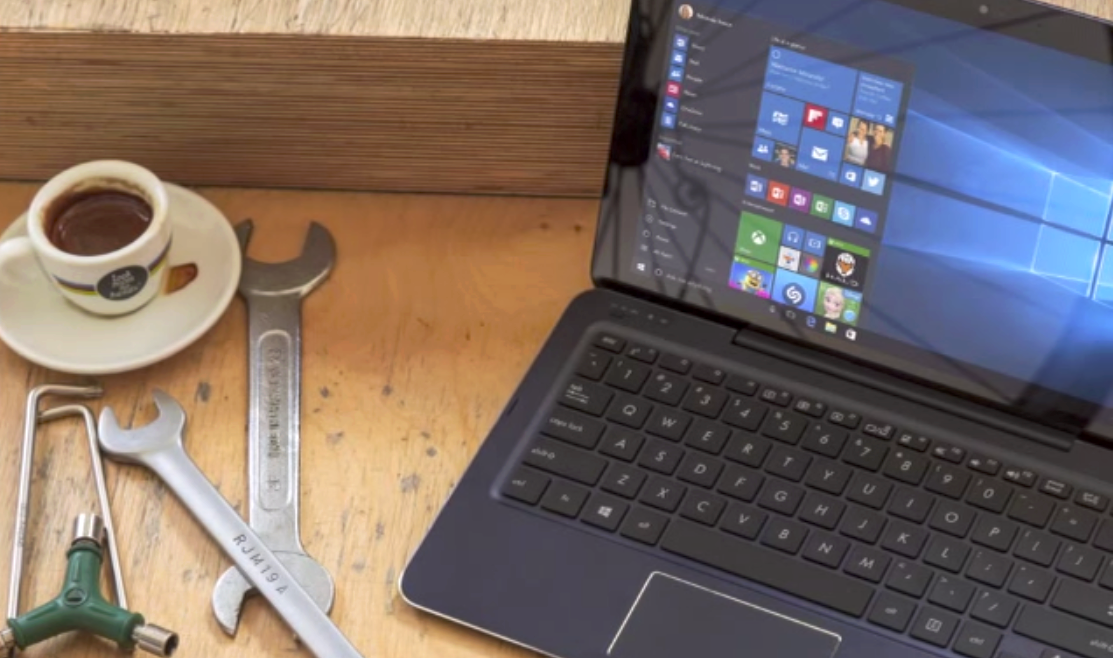
We’ve covered a lot of what you can do with Windows 10 (and also explained how to overcome many of the operating system’s major problems), but if you want more guidance and handy tips and tricks, Microsoft has just released a collection of short How to videos for its new OS.
The guides cover everything from using Cortana and Windows Hello, to linking your Xbox to your Windows 10 PC. There are also videos explaining how to use Microsoft Edge, the Windows Store, OneDrive, and Surface Hub Touchback. And if you want tips to boost your productivity, and do more with the Start menu, there are videos covering those areas as well.
In total there are ten new videos which we’ve embedded for your viewing pleasure below. The style of the videos changes depending on what they are about. Some are straightforward guides, while the Cortana video shows a bunch of people using the virtual digital assistant in a range of real world scenarios.
If you need further advice, there’s even a video that can help you get help!
SEE ALSO: How to do a clean install of Windows 10 the easy way -- no upgrade required
The list of new guides is as follows:
- Windows 10 How-To: Hey, Cortana
- Windows 10 How-To: Start Menu Tips and Tricks
- Windows 10 How-To: Windows and OneDrive
- Windows 10 How-To: The Surface Hub Touchback
- Windows 10 How-To: Microsoft Edge
- Windows 10 How-To: Windows Store
- Windows 10 How-To: 5 Tips for Productivity
- Windows 10 How-To: Xbox on Windows
- Windows 10 How-To: Windows Hello
- Windows 10 How-To: How to Get Help
Microsoft previously released a collection of videos to help users overcome a range of audio issues.
-

Ha-ha! Windows 10 is already twice as popular as Windows 8
Publié: septembre 1, 2015, 11:20am CEST par Wayne Williams

The last lot of desktop OS figures released by NetMarketShare showed that Windows 10 had doubled its usage shared in a matter of days, but it wasn’t exactly an exciting number. Upon release the new OS managed to go from 0.16 percent to 0.39 percent.
But now that Windows 10 has had a month to settle in, we can finally see exactly how well it’s doing. Microsoft has said that there have been over 75 million installs, but what does that equate to in terms of usage share? NetMarketShare’s figures for August always promised to be exciting, and they definitely don’t disappoint now that they’re here.
According to the analysis firm, Windows 10 now has 5.21 percent of the market. That’s a massive leap in a single month and shows the power of free. Microsoft needed to shift people off Windows 7, and wipe away the stench of Windows 8, and it looks to be succeeding here. Interest, and updates, might (and likely will) tail off over time, but the new OS is off to a cracking start.
Naturally, Windows 10’s success comes at a cost for the other operating systems. Windows 8 dropped 0.21 percentage points going from 2.77 percent in July to 2.56 percent in August. Windows 8.1 dropped 1.72 percentage points, going from 13.11 percent to 11.39 percent.
Combined Windows 8.x lost 1.93 percentage points. Windows 10 might be well ahead of Windows 8 now, but it still has a way to go to overtake both iterations of the tiled OS. At the rate upgrades are happening, we can probably expect that to occur in the next few months.
Windows 7 also lost share in August, going from 60.73 percent to 57.67 percent, a drop of 3.06 percentage points. It’s still by far and away the most popular operating system and it will be interesting to see whether Windows 10 will be able to topple it.
Windows XP users don’t benefit from getting Windows 10 for free, so it was going to be hard to predict how much the arrival of the new OS would affect its share. However, I doubt anyone would expect share to climb, but that's what happened. In July XP had 11.72 percent of the market and in August that rose to 12.14 percent.
Some of the drops can be attributed to summer (people use their computers less when the weather is nice), but even so it’s clear that Windows 10 is shaking things up.
Photo Credit: Vikacita/Shutterstock
-

How to do a clean install of Windows 10 the easy way -- no upgrade required
Publié: août 31, 2015, 1:08pm CEST par Wayne Williams

If you want to upgrade Windows 7 or 8 to Microsoft’s new operating system you can do so through the Get Windows 10 App which appears in your system tray, or by using the Windows 10 Media Creation Tool. Upgrading to Windows 10 is very straightforward, but what if you want to do a clean install, which will clear out all the old clutter and give your PC a performance-boosting fresh start?
According to Microsoft, in order to do this you will need to upgrade your existing version of Windows first. This will upgrade your Windows key, and you’ll then be able to Reset your PC, or format the drive and run a clean install (you can do this because your upgrade entitlement is stored in the cloud). There is however, a clever trick that will allow you to perform a clean install without ever going through the upgrade stage.
SEE ALSO: The best alternative Start menus for Windows 10
The trick, which was discovered by Reddit user justmoa, and first reported by the always excellent Ghacks, does require you to have access to your previous version of Windows before you start.
As with any clean install, you will need to back up all of your personal data, passwords and the like before proceeding as this will be wiped otherwise. When you’ve done that, follow these steps.
- Get a Windows 10 ISO image from here.
- Burn the ISO, or mount or extract it.
- Open File Explorer and navigate to either \Windows\x64\sources or \Windows\x32\sources. Find gatherosstate.exe in the folder and drag it to the desktop.
- Run the exe. This will create a GenuineTicket.xml file. Save this to a USB flash drive or anywhere else other than your system drive.
- You can now format your drive and run the clean install. Skip the product key.
- Once Windows 10 is up and running, copy GenuineTicket.xml to C:\ProgramData\Microsoft\Windows\ClipSVC\GenuineTicket.
- The folder is hidden by default. If you can’t see it, go to File > Options > View > Show hidden files, folders and drives in File Explorer.
- Reboot your PC.
- Hit Windows+Pause. This will bring up a window showing system information, and at the bottom it should show Windows 10 as activated.
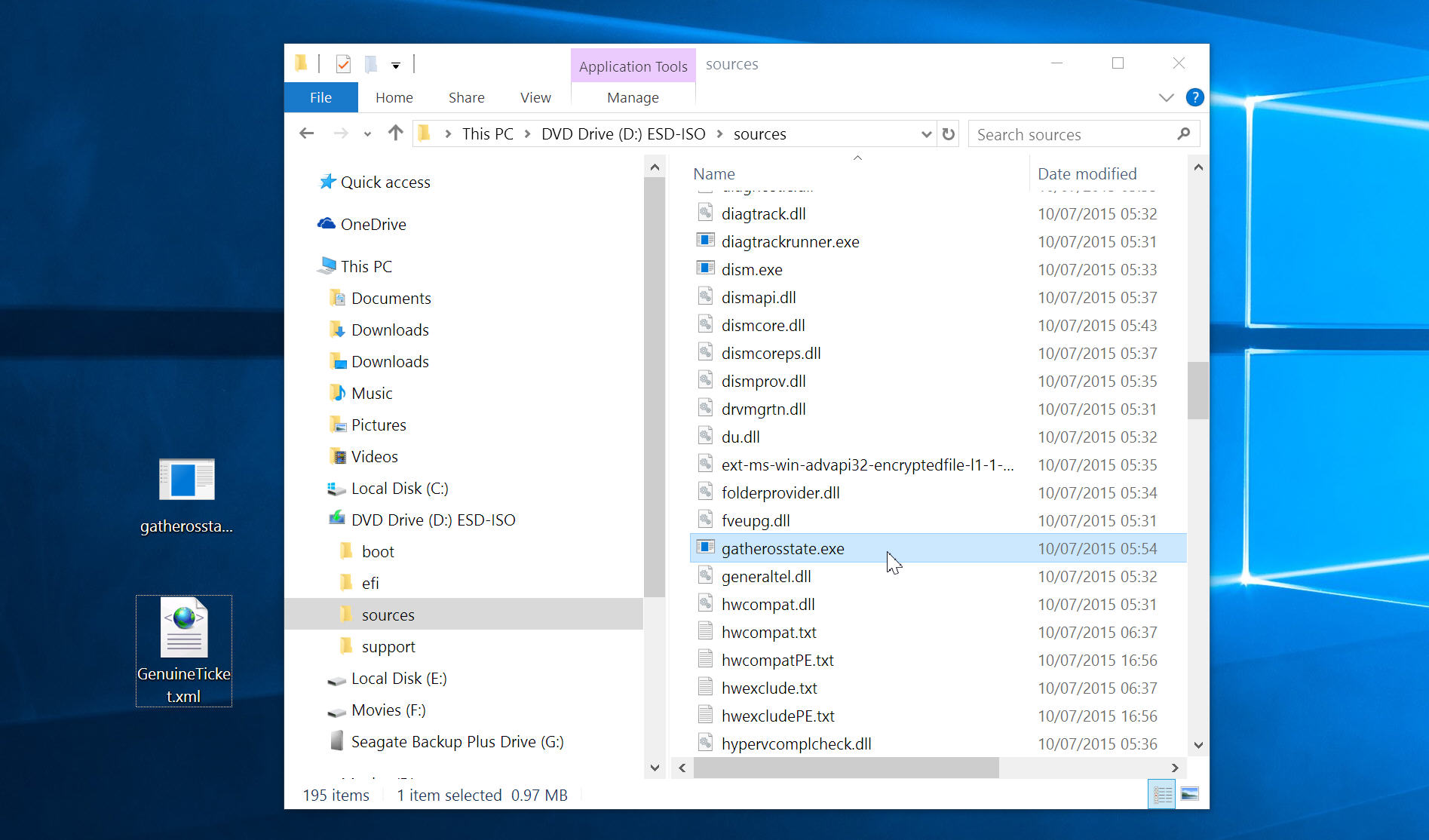
Image Credit: Edyta Pawlowska/Shutterstock
-

Smart Home HD Starter Kit: A simple way to a smart home [Review]
Publié: août 28, 2015, 11:35am CEST par Wayne Williams
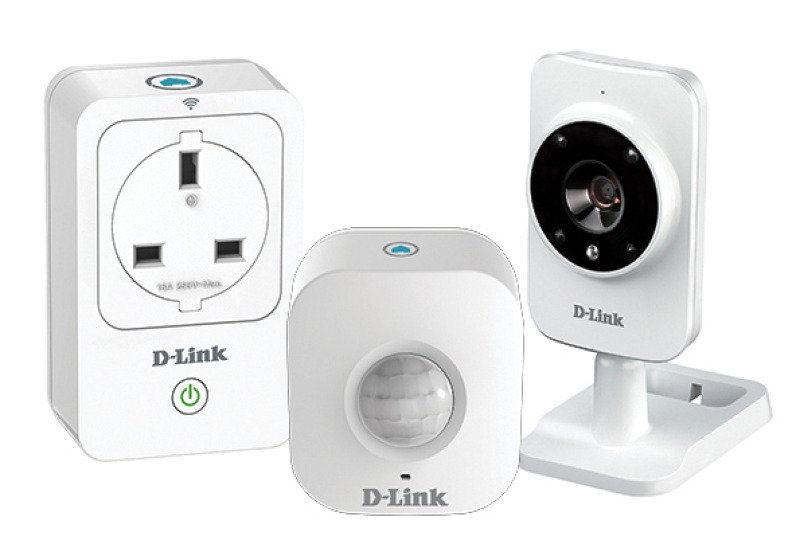
There are lots of ways to create a connected home. My colleague Alan Buckingham is using Amazon Echo as the base to control his home’s lighting and heating, with occasionally interesting results (Alexa sometimes leaves him sitting in the dark).
If you’re not sure where to start, and you don’t want to spend too much money getting up and running, then mydlink Home's Smart Home HD Starter Kit from Ebuyer is a simple and smart solution. For your money you get an HD night-vision camera, Smart Plug and Wi-Fi Motion Sensor.
The camera (DCS-935L) lets you view your home on your smartphone and includes motion and sound detection. It offers 720p video and built-in night vision. Sound can be toggled on or off, and you can take screenshots of interesting activity. You can zoom in and out of the screen to look at things in better detail.
The smart plug lets you remotely control appliances, such as lamps, and you can turn them on or off, or schedule actions. You can monitor energy usage of connected appliances, and the plug will prevent the items from overheating via a useful built-in thermal sensor. The motion sensor can alert you by push notification when movement is detected in your home and it has a range of up to 8 meters.
You can, of course, use the devices in conjunction with one another by setting up rules. If the motion detector spots movement, or the camera hears a sound, they can turn on the plug, which -- for example -- could cause a light to come on.
Setting the kit up is very easy. Just scan the first QR code in the Quick Install Card to grab the relevant iOS or Android app. Open the app and create a free account. Click the Add new device button and then scan the second QR code using the app. Plug all of your devices in and then follow the setup process for each in turn. If your router supports WPS, setting up the products is pretty straightforward.
If you run into problems, as I did when setting up the camera, you can switch to doing things manually. This takes a little longer but is simple enough. Once set up you can password protect the camera to prevent anyone gaining access to it.
As soon as everything is up and running, you’ll probably need to install any available updates.
While it’s very much a starter kit, everything works really well. You can get alerts sent to your phone, so if someone breaks into your home you’ll get notifications when motion is detected, and also if anyone unplugs one of the devices.
The motion detector is very good I've found, and you can adjust the sensitivity which is useful if you have pets in the home which might trigger it continually.
If your smart home needs are pretty basic -- and let’s be honest, most people don’t require anything too wildly futuristic -- then this is a great starter kit, and you can add extra components to the setup as and when required.
The Smart Home HD Starter Kit costs £121.18 from Ebuyer (with free P&P), and comes highly recommended.
-

Windows 10 Insiders have a new desktop preview to play with -- Build 10532 available now
Publié: août 27, 2015, 9:42pm CEST par Wayne Williams

If you’re part of the Windows 10 Insider Preview program you’ll already be rocking one build ahead of the version being used by 75 million plus upgraders. Today the software giant pushes out a second new build, which is starting to roll out now.
Build 10532 is available to those Insiders on the Fast ring and offers some big new features, including improved context menus and better feedback sharing. Naturally, there some potential issues to be aware of too -- but such is life on the bleeding edge.
Microsoft's Gabriel Aul says "We’ve heard feedback about the consistency of menus within Windows 10, so we’ve made some changes to improve these and give them a modern look and feel. We are still working on it, but you’ll see some good changes with this build". Consistency is a big problem in Windows 10, and it's good to see Microsoft working hard to address this.
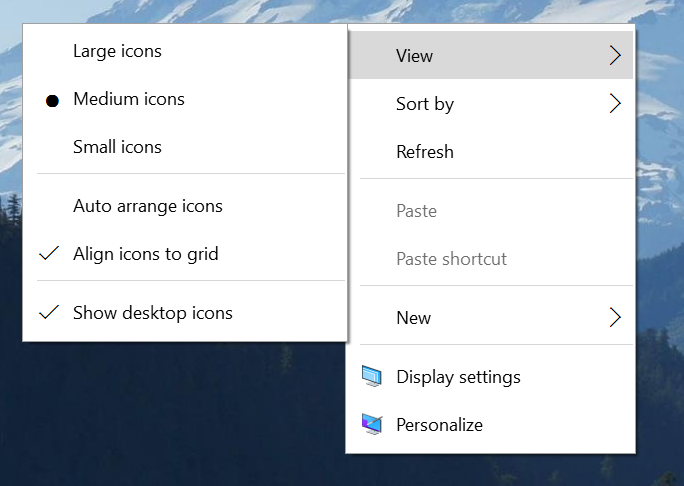
The Windows Feedback app has been improved to make it easier to share your feedback with others. "You have the option to share using any application that supports the Windows Share functionality or get a direct link copied to your clipboard for pasting anywhere you like. We think this will help Insiders more easily share specific feedback and suggestions with other Insiders on Twitter, Insider forum discussions, and directly with our engineers", Aul says.
As to the known issues, in this build they are:
- Windows Hello face sign-on will not work on this build with some devices; the device can still be unlocked with other methods like pin, password, or fingerprint.
- As reported by Insiders on the build 10525, 64 bit Google Chrome will crash on launch. Google is aware of the issue. In the meantime their 64 bit Google Chrome Canary build or 32 bit Google Chrome will work on this build.
If you're waiting for a new Mobile build, you'll have to hang on a while longer as Microsoft doesn't currently have one that is ready to go out to testers yet, but it does have some candidates that are looking promising, so stay tuned.
If you were a Windows Insider before the official release, you may still be opted into the program. If you opted out and want back in, or want to join, you can do so by going to Settings > Windows Update and clicking on Advanced Options. Click the 'Get started' button under 'Get Insider builds'.
Click Next to acknowledge the risks, and then click Confirm. You’ll need to restart your PC before you can begin to get Insider builds.
Photo Credit: Viorel Sima/Shutterstock
-

New mystery updates arrive on Windows 10
Publié: août 27, 2015, 9:15pm CEST par Wayne Williams

New updates are coming thick and fast(ish) to Microsoft's new operating system, fixing problems and making it a bit more usable.
Today the software giant pushes out three new updates. These will be installed automatically, and you can check for them now by going to Settings > Update & Security.
The three updates in question are:
- KB3081448 -- Cumulative Update for Windows 10 for x64-based Systems
- KB3081449 -- Update for Windows 10 for x64-based Systems
- KB3081452 -- Unknown
So what do the updates do? We don’t know. They are available to install now, but the corresponding Knowledge Base support pages aren’t yet live.
So essentially you’ll be installing these new updates without knowing what they do.
Microsoft has said it will only provide information about Windows 10 updates when it wants to, but some indication of what the updates are for would be nice…
We shall update this post once the Knowledge Base pages go live.
Photo Credit: fotoscool/Shutterstock
-

New mystery updates arrive on Windows 10 [Updated]
Publié: août 27, 2015, 9:15pm CEST par Wayne Williams

New updates are coming thick and fast(ish) to Windows 10, Microsoft's new operating system, fixing problems and making it a bit more usable.
Today the software giant pushes out three new updates. These will be installed automatically, and you can check for them now by going to Settings > Update & Security.
The three updates in question are:
- KB3081448 -- Cumulative Update for Windows 10 for x64-based Systems
- KB3081449 -- Update for Windows 10 for x64-based Systems
- KB3081452 -- Compatibility update for upgrading to Windows 10
So what do the updates do? We don’t know. They are available to install now, but the corresponding Knowledge Base support pages aren’t yet live.
So essentially you’ll be installing these new updates without knowing what they do.
Microsoft has said it will only provide information about Windows 10 updates when it wants to, but some indication of what the updates are for would be nice…
Updated: The Knowledge Base pages are now live, so you can go and see what changes Microsoft has made to your operating system.
Photo Credit: fotoscool/Shutterstock
-

Surprise! Apple will stream its iPhone event live to Windows 10 users
Publié: août 27, 2015, 8:53pm CEST par Wayne Williams

Apple always live streams its launch events, but only users of its products can tune in as the company restricts the streams to Apple TV and Apple devices running Safari. It’s a little odd, preaching to the converted, but as much of the company’s new hardware sales go to existing users of Apple products it’s clearly an approach that works well.
Windows and Linux users can get around this restriction by using VLC Media Player to stream the event, but getting things set up is a bit of a pain. This year however, Apple is inviting a new audience to view the live stream -- Windows 10 users.
As my colleague Mark Wilson notes when discussing what Apple’s 9 September event has in store, the holding page for the live stream of the event includes Microsoft Edge on Windows 10 as one of the ways the stream can be viewed.
This is a huge surprise, and raises the question -- why Edge? If Apple is opening up the stream to another browser, on another operating system, why not make it available to watch on Chrome and Firefox too?
The reason is that Apple uses the HLS (HTTP Live Streaming) protocol for its streams -- which it invented -- and Microsoft has implemented this in its new browser. Chrome supports HLS, but only mobile versions.
So if you’re a Windows 10 user and fancy watching Tim Cook reveal the next generation of Apple iPhones you’ll be able to do so on 9 September, and tune into all future live Apple streams too.
Photo Credit: ostill /Shutterstock
-

Canonical: give Windows 10 the shove and embrace Ubuntu
Publié: août 27, 2015, 7:04pm CEST par Wayne Williams

I use two desktop operating systems regularly -- Windows 10 and Ubuntu. The former is on my main PC, while the latter came pre-installed on a laptop. I’ve always liked Ubuntu, but never enough to make it my primary OS. Because I spend my days writing about Windows it’s kind of a no brainer that I should immerse myself in Microsoft’s operating system.
However, Canonical, the company behind Ubuntu, would like people to question their choice of OS, now that Windows 10 is here.
A new blog post on the company’s website puts forward the reasons why businesses in particular should think about switching, and asks whether public and private enterprises have stuck with Windows out of habit, rather than because it’s the best choice for them.
The 'comfortable' next move would be to simply upgrade; however, the heavy resource constraints on devices and meatier royalty fees have turned off even the most fervent Windows followers. Top media across the globe are analyzing ways to snub Windows 10 (see Le Monde August 4, 2015 article '5 operating systems to snub Windows 10') and, in my opinion, for mainstream users who care about their privacy, this is probably the best possible time to take a closer look at other choices.
Obviously Canonical would say that, but Windows 10 has come in for some heavy criticism regarding privacy with its new OS and this will have some businesses feeling less than comfortable with the prospect of deploying it. But are those concerns going to be enough to put firms off and get them to consider alternative options?
It seems highly unlikely. Canonical suggests the savings gained by choosing Ubuntu over Windows 10 could be "better put towards more altruistic or even epicurean objectives, whilst still allowing you to benefit from a tremendous OS", but that fails to take into account the difficultly firms will have in teaching Ubuntu to a workforce used to Windows. There is a steep learning curve, and companies -- and individuals for that matter -- tend to stick with Windows not just out of habit, but because it’s the easiest choice.
You can’t blame Canonical for using Windows 10’s arrival as a chance to push Ubuntu as an "ultra secure, robust, high performance" alternative, but it seems as if its endeavors are falling on deaf ears.
Stephen Kleynhans, research VP with Gartner, says they’re seeing large numbers of Volume Licensing customers looking to switch to Windows 10 by early next year. "They're interested in going ahead with Windows 10 in much bigger numbers than we saw with Windows 7 six years ago, which has been a bit of a surprise for us," he says.
Good news for Microsoft, but not for Canonical.
Image Credit: Ana-Maria Tanasescu / Shutterstock
-

Amazon Underground offers a way to get over $10,000 worth of Android apps and games entirely free
Publié: août 26, 2015, 6:39pm CEST par Wayne Williams
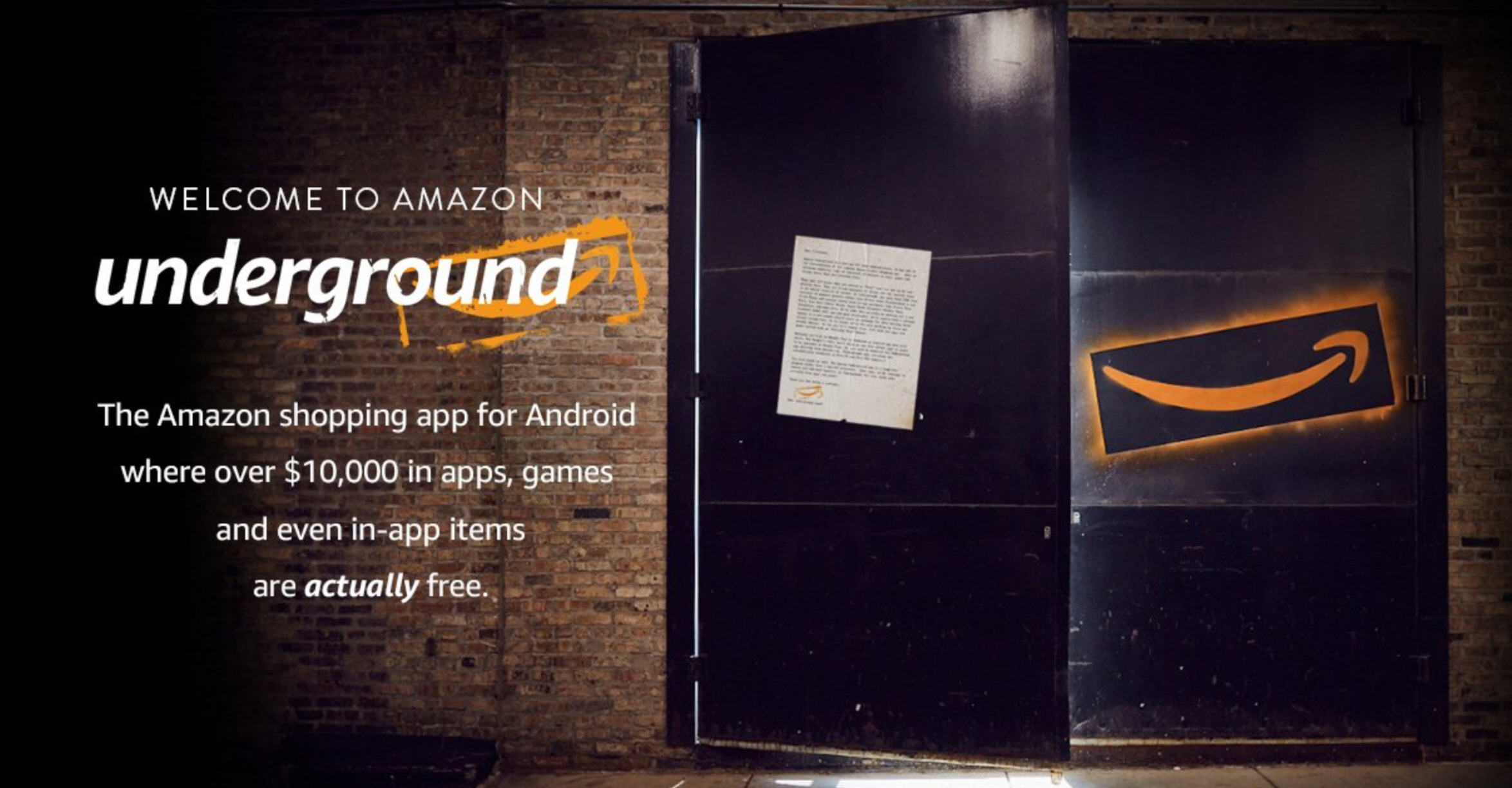
Why pay for something when you can get it for free? Provided free, really is free of course (so many "free" things these days come with hidden costs). If you’re an Android user you’ll want to sit up and pay attention to a new app from Amazon which provides a way to get your hands on all of the apps and games that are actually available for free throughout the Amazon Appstore.
Better still, while the apps and games offered might include in-app purchases in other stores, in Amazon Underground, everything is entirely free. Find an app you like and you'll pay nothing for it, ever.
You can view details of Amazon Underground here, and also download the app. Like the Amazon Appstore itself, Amazon Underground isn’t available on Google Play. You can get the app by visiting amazon.com/underground from your Android Phone, or by entering your email address here. You can install it and make use of the savings on any Android device.
Amazon Underground is available in the USA, UK, France and Germany.
The full information from Amazon is as follows
Dear Customers.
Amazon Underground is a new app for your Android phone. It has all of the functionality of our regular Amazon mobile shopping app... plus an exciting addition: over ten thousand dollars in apps, games and in-app items that are actually free.
Many apps and games that are marked as "free” turn out not to be completely free. They use in-app payments to charge you for special items or to unlock features or levels. In Underground. you will find 100% free versions of popular premium titles like OfficeSuite Professional 8, Goat Simulator, and PhotoSuite 4 and popular titles with in-app purchases like Frozen Free Fall, Star Wars Rebels: Recon Missions, Angry Birds Slingshot Stella, Looney Tunes Dash! and many more. We've made this possible by working out a new business model with app and game developers: we're paying them a certain amount on a per-minute played basis in exchange for them waiving their normal in-app fees. To be clear, we're the ones picking up those per-minute charges so for you it’s simply free. Just look for apps and games marked with an "Actually Free" banner.
Normally you'd go to Google Play to download an Android app onto your phone. But Google’s rules don't allow an app that offers apps or games to be included in Google Play. So, you need to download the Underground app directly from Amazon.com. (Underground apps and games are automatically available on Fire HD and Fire HDX tablets.)
One last point on this. The Amazon Underground app is a long-term program rather than a one-off promotion. Over time, we’ll continue to invent and add more benefits to Underground. For now, enjoy some actually free apps and games!
Thank you for being a customer.
(The Underground team)
-

This app lets you see the invisible Wi-Fi signals all around you
Publié: août 25, 2015, 10:40pm CEST par Wayne Williams
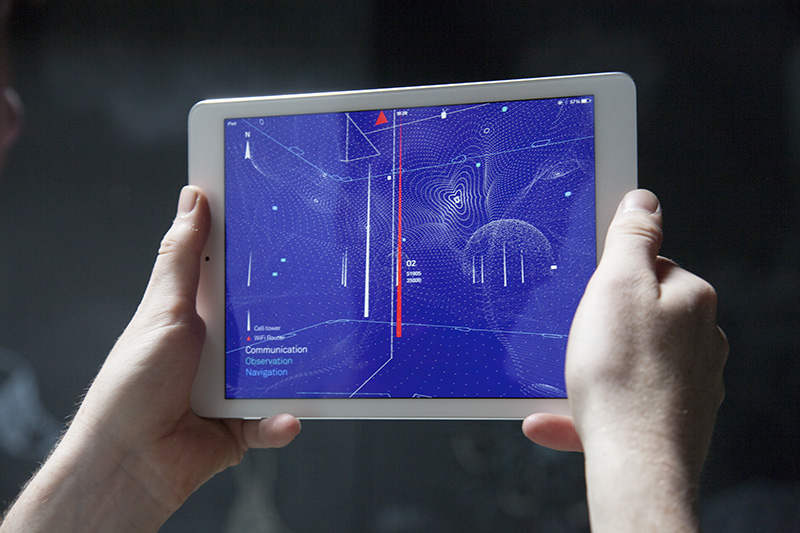
People worry about everything these days, and new technology is often a big cause for concern. Wireless charging, which is starting to appear in appliances, cars, and furniture, has some people fretting that it will microwave their internal organs while they sleep, and it wasn’t that long ago that people were stressing over the possible side effects of Wi-Fi too.
A BBC investigation a few years back found that RF radiation levels in some Wi-Fi-enabled schools were up to three times higher than the levels emitted by a typical mobile phone mast, leading to suggestions that Wi-Fi should be banned in places of education in the UK until its possible dangers had been fully investigated. Of course Wi-Fi hasn’t been banned in schools, or anywhere else for that matter, and it’s become far more ubiquitous. A new iPad app by Dutch designer Richard Vijgen uses augmented reality to visualize the network of radio waves that surround us, and it provides a truly fascinating glimpse into the invisible world that we now rely so much on.
Before you rush off to download the app I should say it’s not actually available to try for yourself. The Architecture of Radio ("a field guide to the hidden world of digital networks") will be on display at Germany’s ZKM | Center for Art and Media from September 2015 - April 2016, but if you can’t make it over there, there’s a video of the app in action available to watch below.
According to the Architecture of Radio website, the app offers a "realtime, location based visualization of cell towers, Wi-Fi routers, communication, navigation and observation satellites and their signals. A site specific version of the app includes wired communication infrastructure embedded in the exhibition space. Its aim is to provide a comprehensive window into the infosphere".
-

How to completely remove OneDrive from Windows 10
Publié: août 24, 2015, 4:49pm CEST par Wayne Williams
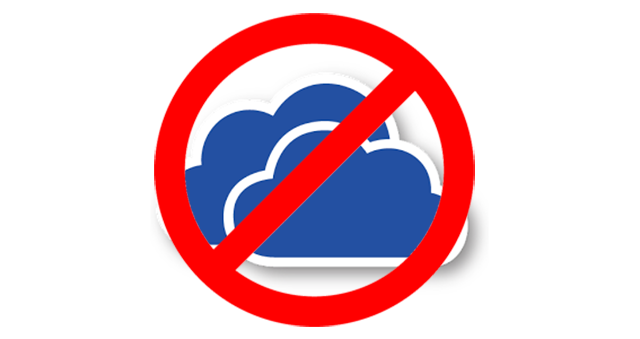
OneDrive, Microsoft’s cloud storage service, is heavily integrated into Windows 10. We've already explained how you can remove the OneDrive entry from File Explorer, but what if you don’t want the service in your new OS at all?
You can disable or uninstall it completely by following these simple steps. This will remove it from File Explorer, and everywhere else.
There is a catch though, and that’s to disable OneDrive you need to use the Group Policy Editor and that tool is only available in the Professional, Enterprise and Education editions of the OS. It isn't in Windows 10 Home.
To launch the Group Policy Editor, click Start and type gpedit.msc. Go to Local Computer Policy > Computer Configuration > Administrative Templates > Windows Components > OneDrive. Then enable Prevent the usage of OneDrive for file storage.
SEE ALSO: How to fix Windows 10's worst problems
You can uninstall OneDrive through the Command Prompt. Right-click the Start button and select Command Prompt (Admin). Terminate any running OneDrive processes by typing taskkill /f /im OneDrive.exe. Hit enter.
If you’re using the 32-bit version of Windows 10 type:
%SystemRoot%\System32\OneDriveSetup.exe /uninstall
Or, if you’re using the 64-bit edition, type:
%SystemRoot%\SysWOW64\OneDriveSetup.exe /uninstall
There’s no confirmation that this has successfully removed OneDrive from Windows 10, but you’ll find the app will no longer be available (your OneDrive files and folders will still exist however).
There’s also a third-party tool you can use to uninstall OneDrive if you want the simplest method. It’s available here.
You can reinstall OneDrive at any point in the future by going to %SystemRoot%\SysWOW64\ in File Explorer and running the OneDriveSetup.exe.
-

How to view and delete your browsing history in Microsoft Edge
Publié: août 24, 2015, 2:31pm CEST par Wayne Williams
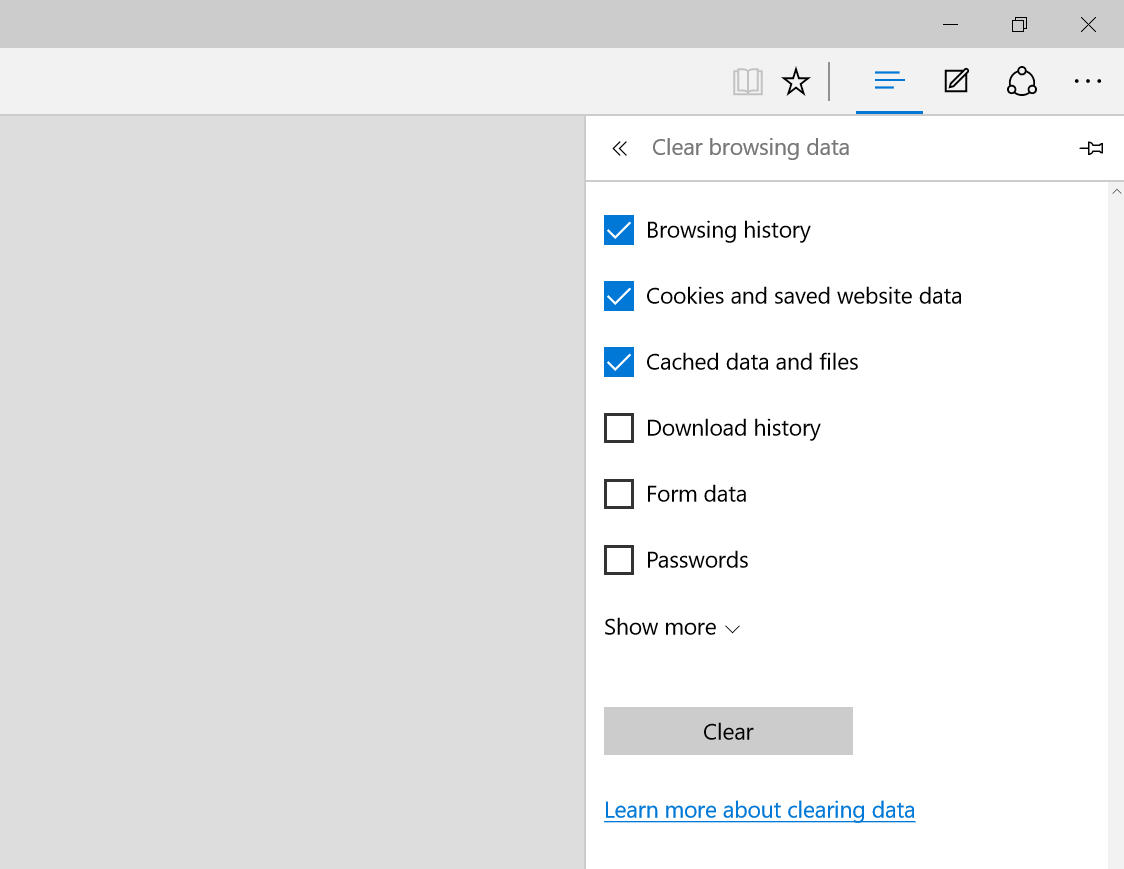
If you’re used to using Firefox or Chrome (or Internet Explorer for that matter), switching to Microsoft Edge in Windows 10 can be a little confusing at first, as it’s not always obvious how to do relatively straightforward tasks in the new browser.
We've already shown you how to change Microsoft Edge's default download folder, and also how to change the default search engine (one of our most frequently asked questions). But how do you access your browsing history in Edge?
It’s actually very straightforward. Tap on the Hub button at the top (three lines) and click on the clock icon. The standard keyboard shortcut, Ctrl+H works in Edge too.
SEE ALSO: Automate login and bypass the lock screen in Windows 10
You can browse your history, and wipe it entirely by clicking the Clear all history link at the top. You’ll be given the option to remove Browsing history, Cookies and saved website data, and Cached data and files (all three are selected by default), as well as optionally clear Download history, Form data, and Passwords. Click 'Show more' and you’ll also be able to clear Media licenses, Pop-up exceptions, Location permissions, Full screen permissions and Compatibility permissions.
If you just want to clear select entries (searches for birthday presents or porn, perhaps), click the x next to the items you want to remove.
-

How to make Windows 10's UAC prompts less obtrusive
Publié: août 24, 2015, 12:17pm CEST par Wayne Williams
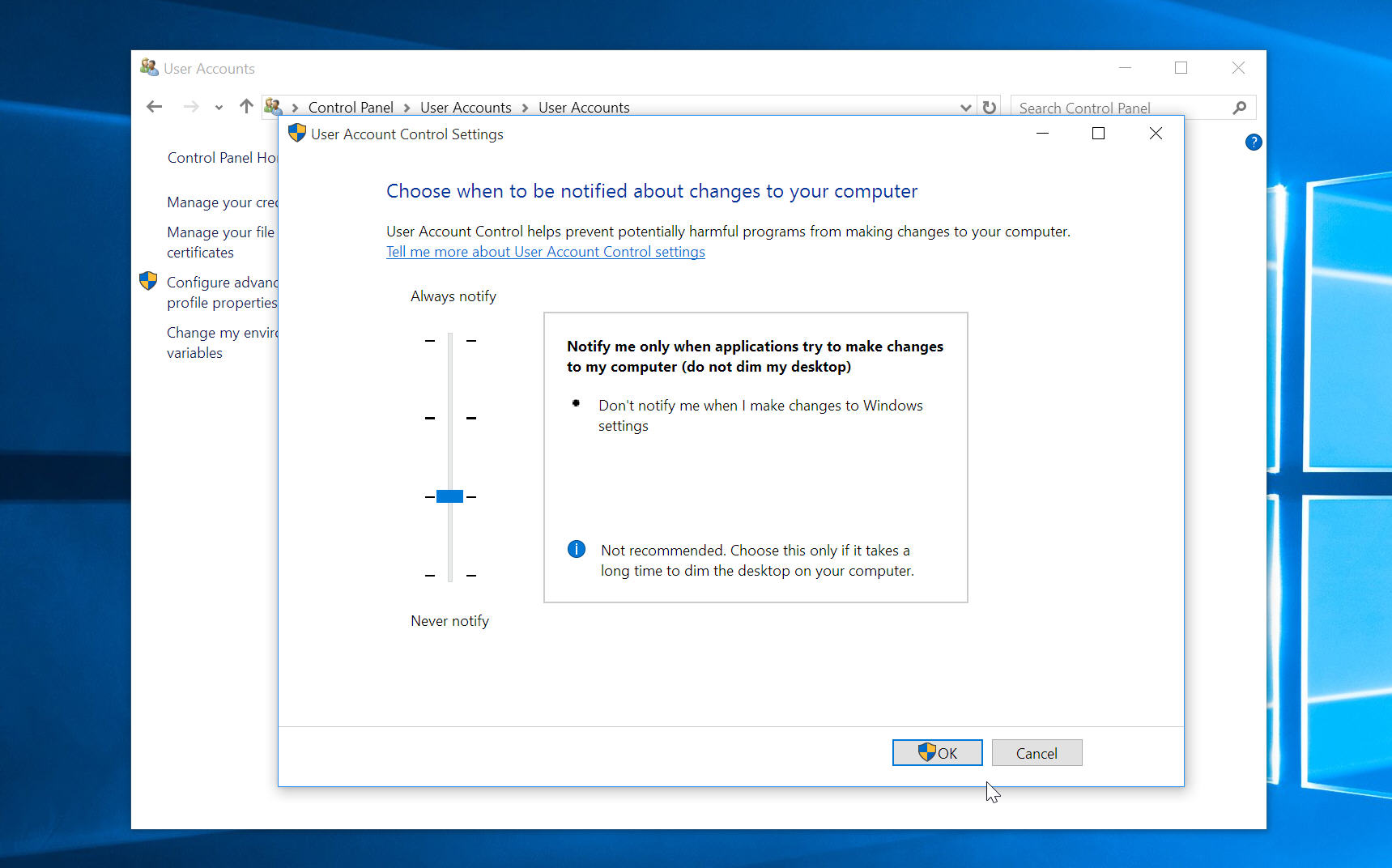
User Account Control (UAC) has been part of Windows since Vista. When it was first introduced it was incredibly annoying, but over the years Microsoft has tamed it a little to the point where it only springs into action when it has to. Most of us don’t really pay too much attention when the prompts pop up now.
However, they can still be rather obtrusive at times. Try to launch regedit in Windows 10, for example, and you’ll be presented with a full screen UAC prompt that temporarily prevents you from doing anything else until you've clicked it away. This is the most annoying aspect of UAC, but the good news is you can stop the prompts from taking over your PC in this way.
SEE ALSO: How to force Cortana to use Google instead of Bing in Windows 10
The following trick doesn't disable UAC, you’ll still need to click the prompts when they appear, but what it does do is disable the dimming of the screen, allowing you to continue using your PC.
Go to Start, type Control Panel and hit enter. Select User Accounts and again in the next window. Click the Change User Account Control settings link at the bottom. Move the slider from Notify me only when applications try to make changes to my computer (default) to Notify me only when applications try to make changes to my computer (do not dim my desktop). Click OK and accept the UAC prompt that appears.
-

Windows 95 launched 20 years ago today and changed the world
Publié: août 24, 2015, 10:14am CEST par Wayne Williams
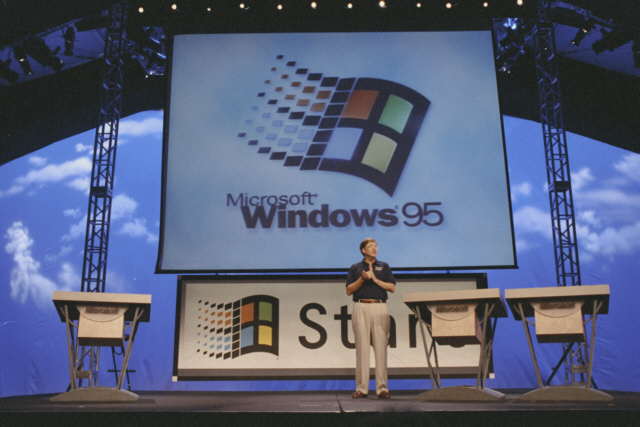
I first started writing about computers for a living in 1993, when I joined a UK magazine called PC Home. Back then we used Windows 3.11 and MS-DOS, and much of our online life was spent on CompuServe, although the World Wide Web (and the "information superhighway") was slowly starting to make its presence felt.
After I’d been in the job for a couple of years, Microsoft announced a new version of its OS: Windows 95. The launch event was held on a 12-acre sports field in Redmond. Over 500 press representatives attended, along with 2,000 computer industry heavyweights. Over 70,000 others watched live worldwide via satellite television feeds. The new OS was hugely different to 3.11 -- being 32-bit for starters, integrating DOS and Windows and boasting a smart new look that included a desktop, taskbar and Start button. And I absolutely hated it.
I wasn’t alone. For the first few months after its arrival only one person in our office used Windows 95 as his primary operating system and the rest of us used his computer when we wanted to write something about it. Other tech journalists I spoke to weren't that keen either.
Fortunately for Microsoft, consumers were far less reticent to try something different -- Windows 95 sold some seven million copies in the first five weeks, buoyed by the multimillion-dollar hype (Microsoft spent an estimated $300 million promoting the OS, which included some $12 million for the rights to use the opening chords of the Rolling Stones song "Start Me Up" as its theme tune).
I eventually made the switch to Windows 95, begrudgingly, but I soon embraced it, learned to love it, and I’ve liked every version of Windows since, even -- albeit to a lesser degree -- the much maligned Windows 8.
Looking back to 1995/96 I find it amazing, stupid, crazy that I clung on to Windows 3.11 as doggedly for as long as I did. Preferring to type commands into DOS instead of using menus in a GUI. I can’t see what possible reason I had for resisting change, avoiding making such an obvious upgrade, even though it must have been very clear to my youthful self back in the day. I'm sure there are people clinging onto Windows 7 instead of opting to upgrade, for free, to Windows 10 right now, and who in years to come, will wonder what took them so long to make the switch (although Windows 10 is far from revolutionary, as Windows 95 was back then).
What's your first memory of Windows 95?
-

Fix Windows 10 audio problems with these new troubleshooting videos from Microsoft
Publié: août 20, 2015, 10:09pm CEST par Wayne Williams

Windows 10 is, for the most part anyway, a decent operating system, but there are teething problems with it. We’ve explained how to fix many of the worst issues with the new OS, but for many people problems persist.
Audio woes are easily the most common complaint with the new operating system and so Microsoft has taken the unusual step of releasing a series of short troubleshooting videos that will help anyone experiencing sound problems to (hopefully) overcome them. And yes, it’s not just one video, it is a whole series -- with 7 videos posted so far.
The videos are:
- Introduction to Troubleshooting Audio Issues in Windows 10
- How To: Run the Audio Troubleshooter in Windows 10
- How To: Turn Off Sound Enhancements in Windows 10
- How to: Troubleshoot Basic Sound Issues in Windows 10
- How To: Use Device Manager to Look for Audio Issues in Windows 10
- How To: Change the Default Playback Format in Windows 10
- How To: Change the Default Playback Device in Windows 10
You might find them helpful, although don’t expect any in-depth troubleshooting. The videos are all very short, typically under a minute (although a couple are a bit longer) and most are a little simplistic. "Troubleshoot Basic Sound Issues in Windows 10" for example lives up to the "Basic" part of its name. No sound? Maybe check your speaker or headphone cables are plugged in and your volume is turned up. Yes, it’s that basic.
If these videos don’t help with your audio problems, it’s worth checking out this sound troubleshooting guide put together by my colleague Mark Wilson.
The full series of troubleshooting videos are embedded below. Microsoft has turned off the comments for them all on YouTube (as it usually does with videos it posts), but feel free to share your thoughts in our comments below.
-

How to force Cortana to use Google instead of Bing in Windows 10
Publié: août 19, 2015, 3:23pm CEST par Wayne Williams
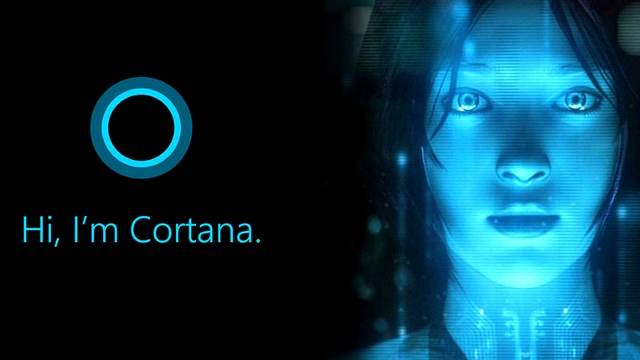
Microsoft is pushing Bing heavily in its new operating system. Bing is the default search engine in Microsoft Edge, and while you can change this to Google (or any other choice), the process of doing so is far from intuitive -- you can’t simply pick "Google" from a list of options.
Cortana, Microsoft’s built-in personal assistant, is powered by Bing too, which means when you ask her a question she doesn’t immediately know the answer to, she’ll open up your default browser and display a list of results sourced from Microsoft’s search engine. There is a way to get her to use Google instead though, but you won’t find this in any Settings.
The trick is to set Chrome as your default web browser and then install the free Chrometana extension.
When Cortana performs a web search using Bing, the add-on will redirect the search to Google instead. It’s seamless and works very well. As a side note, the extension redirects all Bing searches in Chrome, not just Cortana ones.
Chrometana doesn’t only offer Google as a search choice. You can set it to use Yahoo or DuckDuckGo if you prefer.
This trick only works if you have Chrome set as your default web browser. Mozilla is working on its own implementation so future versions of Firefox will automatically redirect Cortana searches to your preferred search engine.
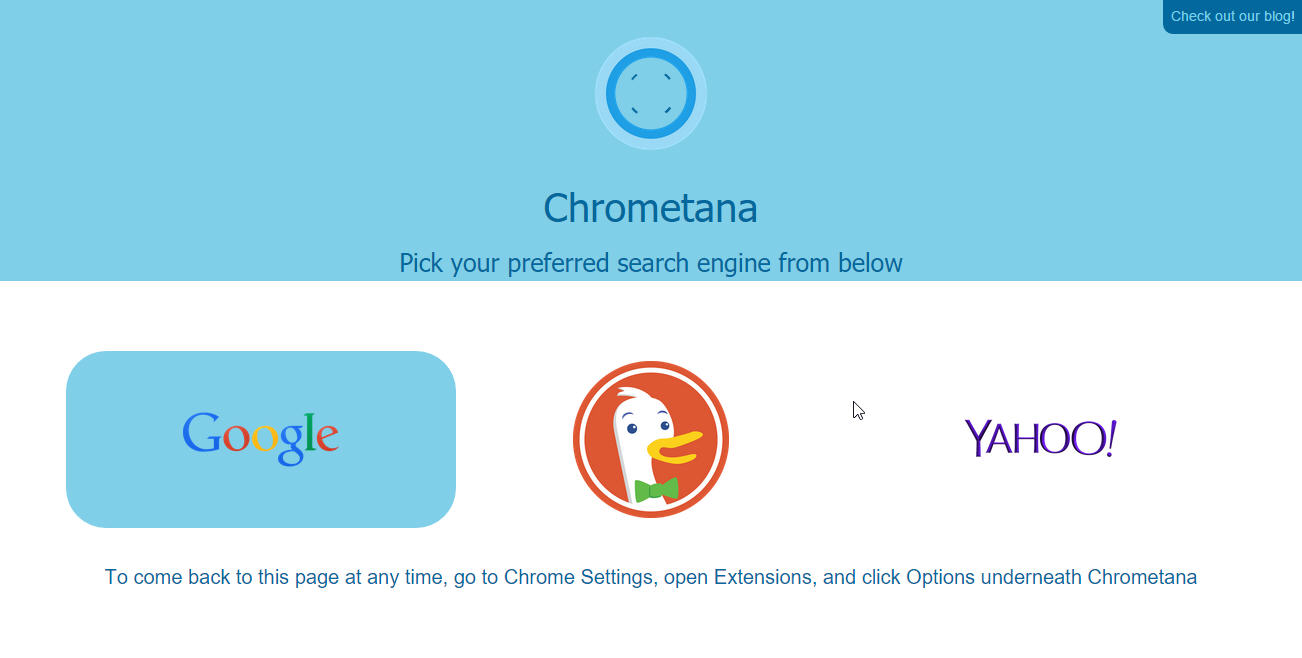
-

Here we go again! Windows 10 Insider Preview Build 10525 arrives on the Fast ring
Publié: août 18, 2015, 8:31pm CEST par Wayne Williams

Windows 10 has officially launched and is available to all, but that doesn't mean the end of the Insider Preview program. Far from it. Sure, there haven't been any major updates since the OS arrived at the tail end of last month, but that's only because the primary focus has been on fixing issues and improving performance on the mainstream version. If you're a Windows Insider on the Fast ring it's time to get excited once more, as Microsoft has just rolled out a brand new build.
Build 10525 offers a couple of changes, but the biggest addition by far is the introduction of updated color options. If you want to change the default color for Start, Action Center, Taskbar, and Title bars, you can now do so easily. The new feature is potentially buggy, and disabled by default, but you can toggle it on by going to Settings > Personalization > Colors.
Other changes include memory manager improvements. If you start running out of memory, Windows 10 will now compress unused pages instead of writing them to disk, reducing the amount of memory used per process, and allowing Windows to keep more applications in RAM. Handy, and obviously you’ll see performance benefits.
SEE ALSO: As of yesterday, Windows 10 has been installed on 67 million devices
Fast ring releases usually have issues, and Build 10525 is no different.
Microsoft lists the following problems to be aware of:
- Mobile hotspot doesn’t work in this build. When sharing the Internet from your device with mobile broadband using Mobile Hotspot, it will fail to get a valid IP address from your device and will show no Internet access.
- An update to Movies & TV application from the Store will be required to fix an issue with video playback.
- Optional languages packs will not be available during the initial launch of this flight, it will be available later this week.
If you were a Windows Insider before the official release, you may still be opted into the program. If you opted out and want back in, or want to join, you can do so by going to Settings > Windows Update and clicking on Advanced Options. Click the 'Get started' button under 'Get Insider builds'.
Click Next to acknowledge the risks, and then click Confirm. You’ll need to restart your PC before you can begin to get Insider builds.
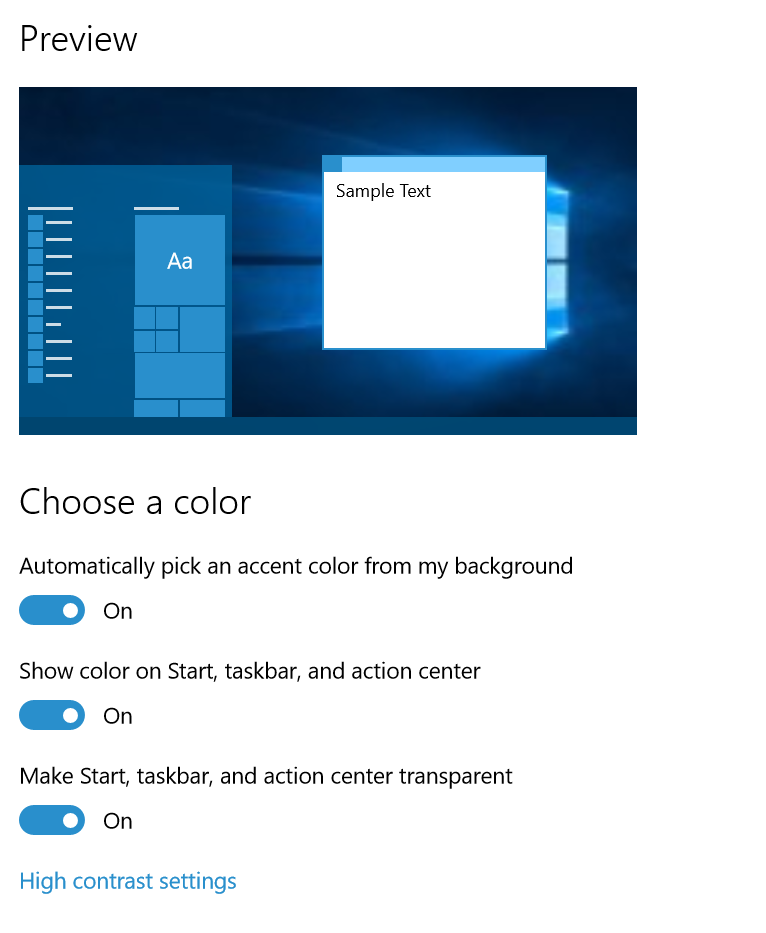
Photo Credit: Syda Productions/Shutterstock
-

As of yesterday, Windows 10 has been installed on 67 million devices
Publié: août 18, 2015, 5:31pm CEST par Wayne Williams

I’ve read some interesting guestimates on the number of Windows 10 downloads lately. One blog plucks a figure out of the air -- "50 million sound fair to you?" -- another blog inflates the number -- "Let’s go with 53 million!" -- and then a whole bunch of other blogs and sites that should know better run with these numbers as if they are real.
The only way we’ll actually know how many Windows 10 downloads there have been to date is if Microsoft releases numbers (and even then, they probably need to be taken with a slight pinch of salt), but we can get a rough, and reasonably accurate idea of Windows 10’s usage share and, from there, the number of downloads to date.
The likes of NetMarketShare and StatCounter monitor millions of websites and look at which operating systems and browsers visitors to those sites use. From there they can work out the usage share. It’s not exact -- there can be variations for all sorts of reasons -- so figures are released at the end of the month, providing an average, and painting a picture of the general increasing and decreasing of popularity.
At the start of September we’ll have a good idea of how well Windows 10 is doing. The new OS was released at the end of July, but on a staggered roll out. When the next set of figures from NetMarketShare/StatCounter arrive, it will show the first full month of Windows 10, and that will give us a proper idea of how well, or otherwise, the new OS is doing.
But while we’re waiting for that we can get an indication of how things are progressing because StatCounter provides daily figures. This allows us to follow Windows 10’s share from pre-launch until now (well, yesterday). And also filter the share by country.
Looking at the numbers, when Windows 10 launched on July 29, the new OS had 0.53 percent of the global market. By yesterday, that had risen to 5.84 percent. Not bad.
In the US alone, share went from 0.5 percent to 6.8 percent. In Europe it stands at an even more impressive 7.8 percent.
If we want to guess at download numbers, we can. Microsoft announced on the 30 July that Windows 10 had been downloaded onto 14 million devices. StatCounter says that on that date, Windows 10’s usage share was 1.22 percent. With a simple bit of math, we can work out that the share increase -- 1.22 percent then, to 5.84 percent now -- means globally, Windows 10 is running on 67 million devices.
(The same math says Windows 8.x is on 195 million devices, globally).
Of course the figures aren’t exact -- share yesterday (and on the 30 July) could have been significantly higher or lower than share on a day either side -- and the 14 million that Microsoft announced could have been rounded up, rounded down, and so on. Other operating systems could have gained or lost share, causing Windows 10's share to alter. Also, while downloads and installs are pretty much the same thing in the case of Windows 10 there's nothing to say that those 14 million downloads were in use on 30 July, and it's usage share that StatCounter measures.
But even so this does still provide a rough idea of the state of play, and shows Windows 10 is progressing steadily.
So is Windows 10 really on 67 million devices? Maybe, maybe not. But right now that’s as good a guess (probably better) as any others you’ll find on the web.
Photo Credit: Sergey Nivens/Shutterstock
-

AMC Security 5 for Android: Review and 3-month free trial of Pro edition
Publié: août 18, 2015, 12:42pm CEST par Wayne Williams

Despite its name, AMC (Advanced Mobile Care) Security 5.0 doesn’t just keep your Android phone safe from malware and other threats. The recently updated app can also clean up junk, boost your device by killing unnecessary tasks, extend its battery life, block calls and SMS messages, and uninstall unwanted apps.
The security side of things is of course the app’s main focus and this includes an antivirus scanner, surfing guard, and anti-theft. There’s also a security guard which lets you toggle settings like Bluetooth, and GPS on or off.
The interface is very simple with a large Scan button in the center of the screen, and Booster and Security buttons below.
The hamburger button at the top left is where you’ll find all of the other options, including an App Manager, Privacy Locker, and Privacy Advisor. The Advisor displays installed apps and lets you view their permissions and uninstall any items you’re not happy with.
Running a scan from the front screen will show you how much space can be reclaimed by cleaning up junk, and you can choose which areas and apps to target. The amount of space that can be freed is shown next to each app and you can check or uncheck each one accordingly. There’s a choice of Deep and Smart scans available.
The Antivirus feature will check your device for threats, and you can choose to run either Fast or Deep scans. A Fast scan will complete in a matter of seconds, while a Deep scan will likely take a minute or two. On test it seems very thorough and spotted a couple of "risky programs" on my phone, including Towelroot, a rooting tool I use from time to time.
There are free and paid versions of the app available. Upgrading gives you access to additional features, such as the ability to run the app on three devices at the same time, scheduled scan and clean, database auto updates, real-time anti-phishing, payment guard (makes online shopping more secure), remote wipe, contacts & SMS vault. Promotional messages are also removed throughout.
If you’re not sure whether it’s worth spending money on the Pro edition there’s a 7-day free trial available, but IObit has given us a special code that will let you try out the Pro version for three months (see below).
As an all-in-one tool, AMC Security does a good job of cleaning of junk and protecting you from malware. Sure, like all such tools, it's debatable whether you actually need it or not -- using common sense is a greater form of protection -- but the breadth of features available make it well worth trying. It doesn’t hog resources and scans complete very quickly.
I'm personally a fan, and have it installed on a couple of Android devices. You can grab it from Google Play, or download the APK from here.
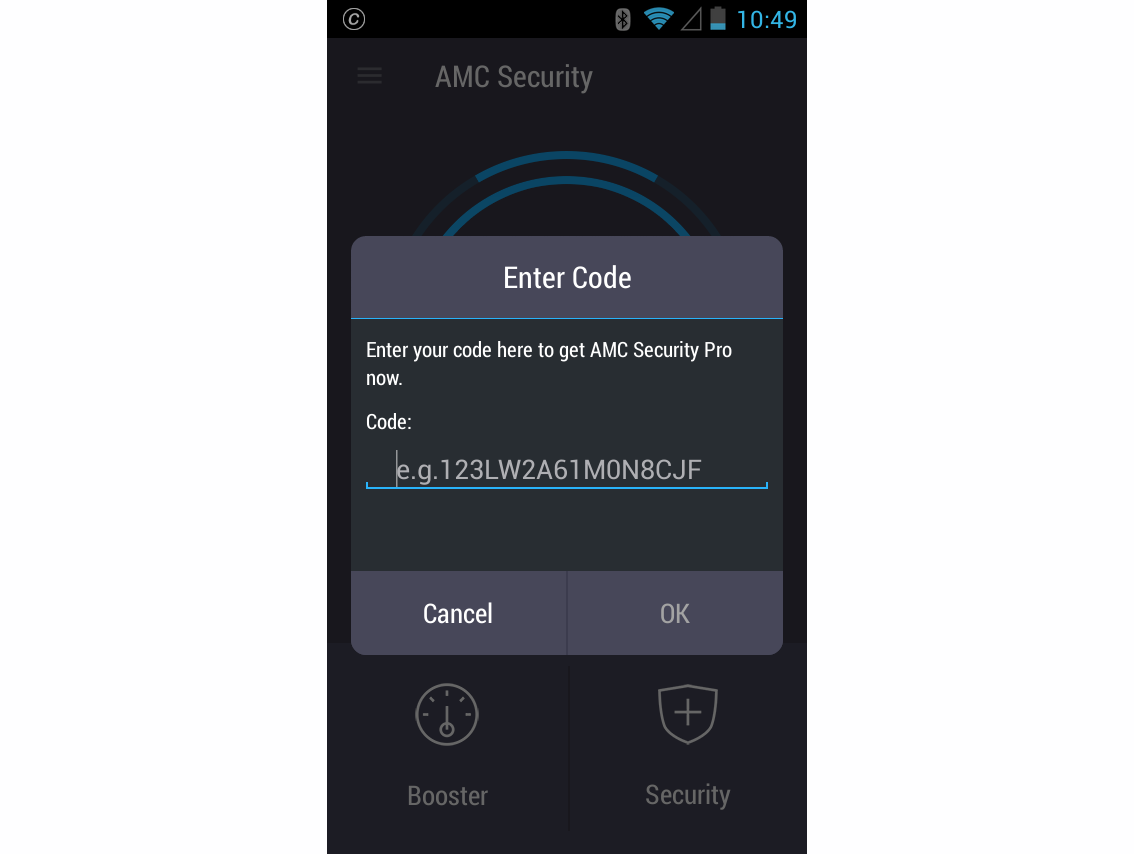
To get your free 3-month trial of AMC Security Pro, tap the hamburger button at the top left and tap on Enter Code. The code you'll need is: JE60MTZXW5VPT3B5. The last activation date is 20th August at 11:59 pm UTC time, so you'll need to act quickly.
-

Google confirms the next version of Android is Marshmallow
Publié: août 17, 2015, 8:15pm CEST par Wayne Williams
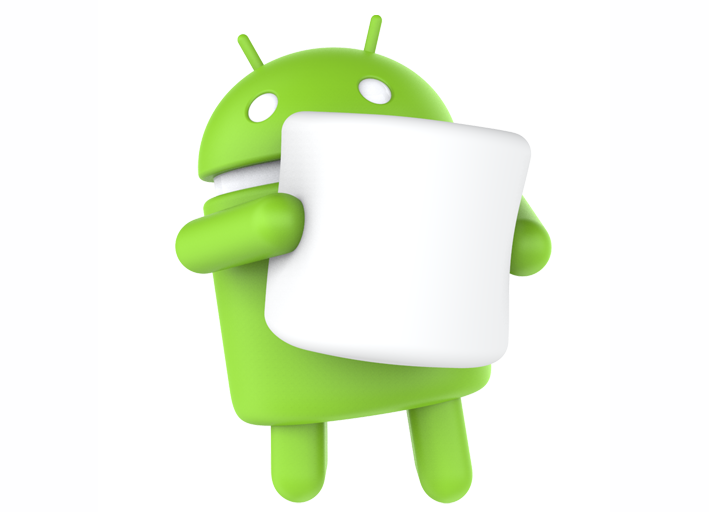
Although Google has been dropping some very heavy hints lately, we didn’t know exactly what sweet treat the next version of its Android operating system would be named after.
Well, if you were hoping to place a bet on "M&Ms" (or go for a truly outside flutter on "Maltodextrin"), you’re too late I’m afraid, and also lucky as you’d have lost your stake. M, Google says, is for Marshmallow.
Today, as well as revealing the official name, Google also introduces the official Android 6.0 SDK and opens up Google Play for developers to publish apps that target the new API level 23 in the mobile OS.
New in Android Marshmallow are exciting features such as fingerprint support and Doze power saving mode. There’s also a new permissions model that lets you choose which functions you want to allow an app access to. The new model "streamlines the app install and update process", according to Google.
Samsung put out a handy infographic a few days ago which detailed all of the new features and you can see that here.
Developers will want to check out the latest blog post revealing the new name and technical details.
If you’re trying to recall all of the previous sweet names given to the various iterations of Android, we’ve got you covered:
- Alpha
- Beta
- Cupcake
- Donut
- Eclair
- Froyo
- Gingerbread
- Honeycomb
- Ice Cream Sandwich
- Jelly Bean
- KitKat
- Lollipop
- Marshmallow
It’s far too early to begin to guess what Android "N" might be, but feel to post your suggestions in the comments below anyway.
-

How Google is accidentally making money from other 'Alphabet' firms
Publié: août 17, 2015, 2:51pm CEST par Wayne Williams

Google is an original name. It’s based on the word googol (1.0 × 10100), but with a different spelling. Alphabet, the name of the tech giant’s new parent company, is far from unique, however. There are hundreds of other "alphabet"-named companies right across the globe. The best known of these being the BMW subsidiary Alphabet International GmbH which owns both www.alphabet.com and www.alphabet.co.uk.
BMW is currently looking into whether Google has committed any form of trademark infringement with its new company name and obviously has the financial clout to take things to court if it feels it has a case. But BWM isn’t the only example of a company with Alphabet in its name, and some -- like Alphabet Signs based in rural Pennsylvania -- find themselves in the weird (and painful) position of paying Google for searches that have nothing to do with them.
Alphabet Signs uses Google Adwords to advertise itself online and sales have been steady lately. However, owner Daniel Keane told me that after Google announced its restructuring plans last week, "There was a huge fluctuation in sales, culminating in a big fat zero on Thursday that Google charged us exactly $586.71 for! Not good".
It’s not just the racking up of Alphabet Signs’ Google Adwords bill that’s an issue either. "It's hit our organic traffic too -- hard", Keane explains. "We generally get around 25 percent of our traffic from our brand name. However, that dropped to ZERO! At this point, our overall search traffic is down around 30 percent total -- we're a mid-size sign shop in Gap, Pennsylvania, and online is our bread and butter".
Searches are up, and sales are down, but Alphabet Signs has no option other than to continue using Google Adwords and try to weather the storm. "We can't be the only ones suffering. I know BMW made all the headlines, but there’s hundreds of businesses with the word Alphabet in their name", Keane says.
Photo credit: Marcos Mesa Sam Wordley / Shutterstock
-

Microsoft improves Windows 10 with new cumulative update
Publié: août 15, 2015, 9:50am CEST par Wayne Williams

Windows 10 is a good operating system, but it does suffer from annoying inconstancies, and frustrating bugs. Microsoft is slowly addressing the latter by rolling out updates designed to make the OS run more smoothly.
The latest update, KB3081438, resolves various issues and, in Microsoft’s own words, includes "improvements to enhance the functionality of Windows 10".
The biggest Windows 10 bugs, including the one that prevented some users from able to access the Windows store and use previously downloaded Store apps, now seem to have now been addressed, and the latest update introduces a lot of minor improvements. You can check out the full list of updates included here.
This cumulative update replaces the one released on Tuesday (KB3081436).
As all updates are mandatory now this new cumulative rollup should be installed automatically, but if you want to speed things along you can by going to Settings > Update & Security> Windows Update.
Let me know if it improves Windows 10 for you.
Photo Credit: fotoscool/Shutterstock
-

Cyber-flashing is apparently now a thing -- Here's how to avoid receiving dick pics from strangers
Publié: août 13, 2015, 10:14pm CEST par Wayne Williams

There’s a new type of mobile phone crime happening in London, according to the BBC, and it’s been dubbed "cyber-flashing". This, in a nutshell, is when the victim -- a woman in the first reported case of its kind -- receives pictures of a stranger’s genitals on their phone.
The offending photos are received via Apple’s Airdrop feature, and so it only affects iPhone owners.
The BBC report tells how a commuter called Lorraine Crighton-Smith received two penis pictures on her phone during a train journey to work.
"I had Airdrop switched on because I had been using it previously to send photos to another iPhone user -- and a picture appeared on the screen of a man's penis, which I was quite shocked by," Crighton-Smith said. "So, I declined the image, instinctively, and another image appeared, at which [point] I realized someone nearby must be sending them, and that concerned me. I felt violated, it was a very unpleasant thing to have forced upon my screen. I was also worried about who else might have been a recipient, it might have been a child, someone more vulnerable than me. My name on Airdrop says Lorraine so they knew they were sending it to a woman. The images were of a sexual nature and it was distressing".
Crighton-Smith called the British Transport Police, but as the pictures were never accepted, there’s no evidence for the police to go on.
Supt Gill Murray of the BTP said cyber-flashing via Airdrop was "new to us", adding, "Receiving an indecent image from someone you don't know must be very distressing and something we would take very seriously. If it happens to you, our advice would be to remain calm, retain the image and report the matter to police as soon as possible".
While there has only been one reported case to date, it’s possible with the resulting publicity cyber-flashing via Airdrop might become more common.
Preventing your phone from receiving unwanted images from strangers via Airdrop is very straightforward. The feature is set to "Contacts Only" by default and so long as you leave it at that, people you don’t know won’t be able to send you unsolicited pictures. To change the Airdrop settings on an iPhone, swipe up from the bottom of the screen, and tap "Airdrop". Make sure the feature isn’t set to "Everyone". From here you can set it to "Off", if you don’t use the function, or limit it to "Contacts Only".
Photo credit: radFX / Shutterstock.com
-

Watch the Samsung Galaxy Unpacked event here LIVE
Publié: août 13, 2015, 12:51pm CEST par Wayne Williams

Samsung is holding its annual Galaxy Unpacked event at New York’s Lincoln Center today, and we’ll be there to bring you hands-on reports following the presentation.
We’ll have to wait to see what’s unveiled, but it’s expected the South Korean tech giant will be announcing two new 5.7-inch smartphones -- the Samsung Galaxy Note 5 and Galaxy S6 edge Plus -- and maybe a new smartwatch, the Gear A. If you can’t be at the event, don’t worry, you’ll be able to watch it right here live.
The timing of the Galaxy Note 5’s reveal is interesting as Samsung usually waits until the IFA in September to roll out a new version of its phablet. This year, however, it’s bringing things forward, presumably to avoid a clash with the rumored Apple iPhone 6s Plus.
The Note 5 is reported to come with a 5.7-inch Super AMOLED 2560 x 1440 display, 64-bit octa-core Exynos processor, 4GB of RAM, and 32GB minimum storage. Expect a 13MP rear camera with optical image stabilisation and two-tone flash, and a 5MP front-facing shooter.
The Galaxy S6 edge Plus will be a larger version of the Galaxy S6 edge which was launched five months ago at the Mobile World Congress 2015.
The Galaxy Unpacked Event starts at 11AM EDT/8AM PT/4PM BST.
-

InFocus IN114x 3D-ready DLP projector: Low price, good value [Review]
Publié: août 13, 2015, 10:14am CEST par Wayne Williams
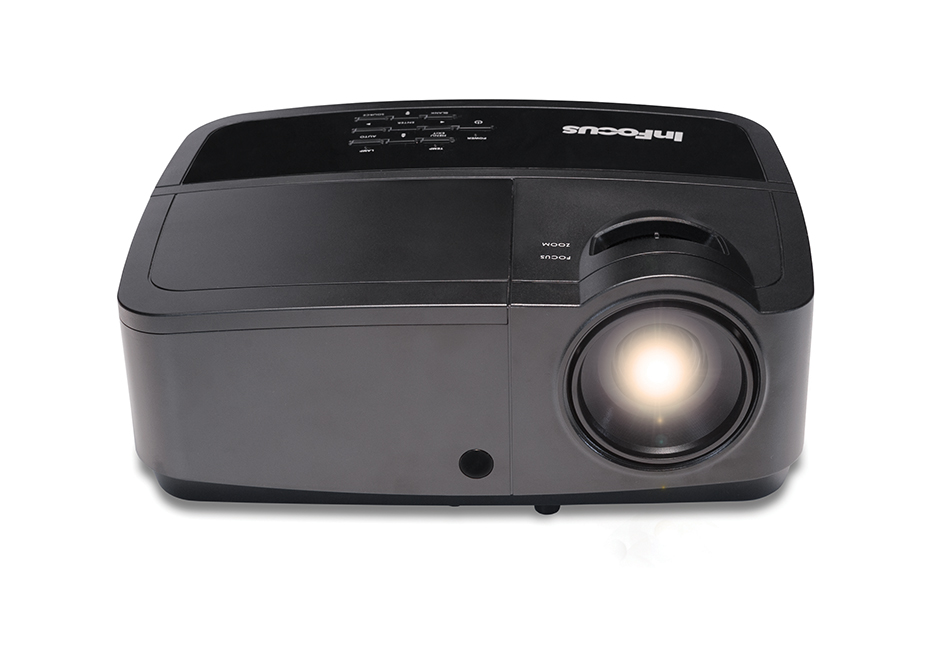
Although it’s primarily designed for business and classroom use, the IN114x DLP projector is a good all-rounder that’s as suited to the home as it is to the office.
It’s affordable, offers decent image quality, and can display 2D and 3D content from a range of sources, including Blu-rays, PCs, and cable boxes. It’s not the smallest projector on the market, but it is compact and lightweight enough to make it easy to transport from location to location.
The IN114x is 121mm(H) x 292mm(W) x 220mm(D) in size and weighs 2.50KG. The projector’s design isn’t revolutionary -- the ports are on the back, the controls on the top towards the rear, with focus and zoom knobs towards the front -- but the lens is recessed, which means you’re not likely to damage it when transferring the projector to somewhere new. You can ceiling mount the IN114x if you’re planning to keep it in the one place.
The IN114x offers a wide array of ports -- 2 VGA inputs, a monitor out, S-video and composite video, HDMI 1.4, RS232C, and USB-B. A VGA cable is supplied. There are also three 3.5mm audio ports -- two for audio in and one for audio out. Sound through the projector is provided by a single 2 watt speaker.
Set up is easy and takes seconds. Just connect your inputs and plug it into the mains -- it uses a standard power cord (supplied) as found with desktop PCs. Hit the on button, and then wait around 5-10 seconds for it to come to life. The angle of the image is adjusted by twisting the feet on the underside.
The controls on the top let you access the menu and switch between sources. The projector comes with a small remote that offers all of the controls you could want including keystone buttons, magnify, volume, resize and overscan. The remote takes two AAA batteries, although none are supplied.
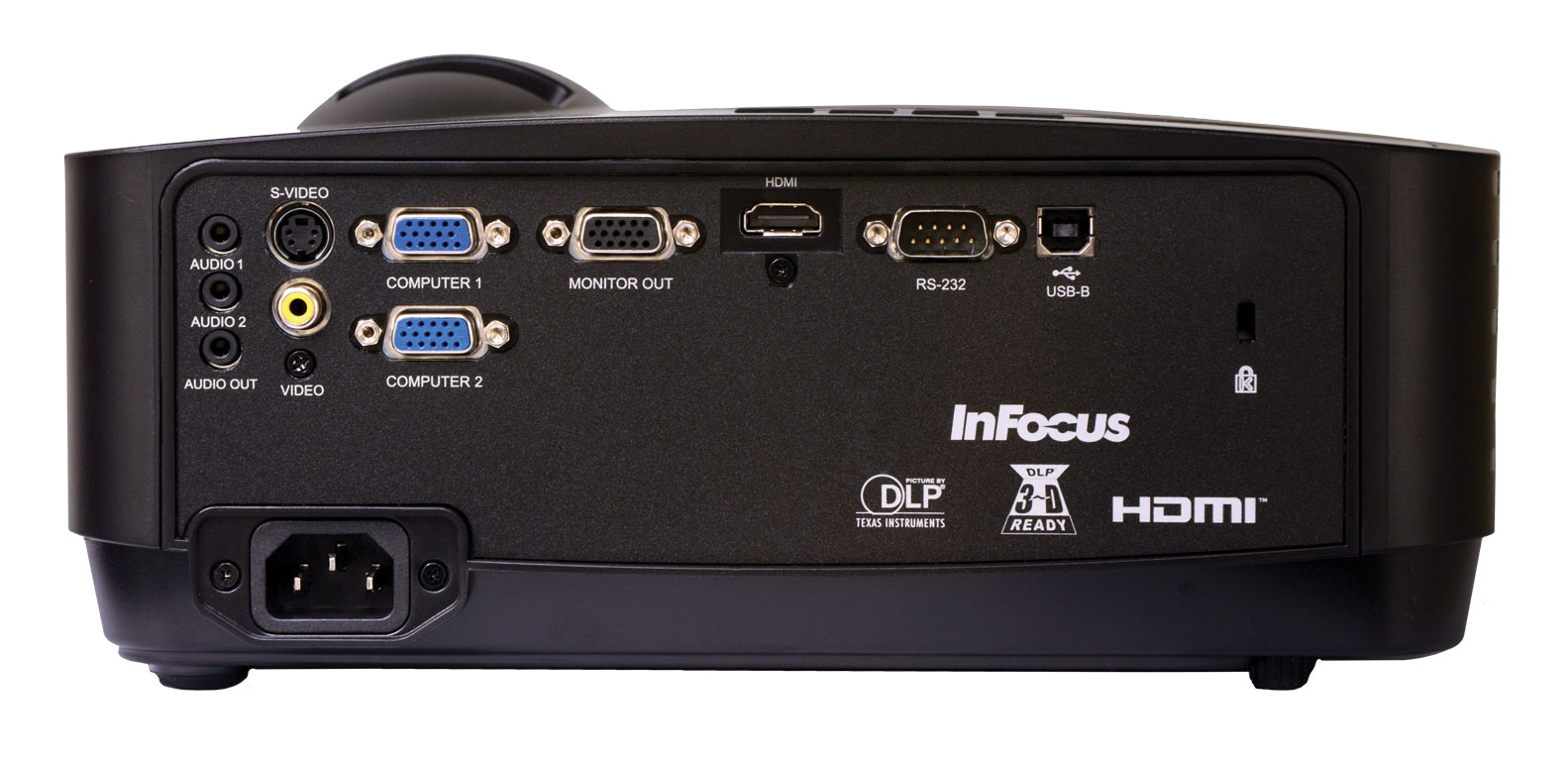
Now we come to the important part -- the image quality. Color reproduction is good, with the DLP (Digital Light Processing) technology managing decent yellows and reds here. The image is, as you might expect, a little soft (LCD projectors offer a sharper image), but text was very readable, even at smaller sizes. The IN114x offers a native XGA (1024x768) resolution but handles higher resolutions -- up to 1920 x 1200 -- well enough. The impressive contrast ratio of 15000:1 means blacks are very dark, and whites are nice and bright. The 3200 lumens lamp ensures the image is clear even when viewed in a well-lit room. There are preset modes that will adjust the image based on the colour of the surface you’re projecting on to.
While the native aspect ratio is 4:3 the IN114x can produce a 16:9 image without any loss of quality. The projector has a throw ratio of 1.9-2.09 and a zoom ratio of 1.1:1.
InFocus promises an average lamp life of 10,000 hours in Eco Blanking mode, 6,000 hours when in Eco Mode, and 4,500 hours when in normal mode. When you come to change the lamp, it’s just a matter of undoing the single screw on the side of the lamp door, sliding the door to the right and lifting it off.
You don’t get much documentation with the product, but the supplied CD includes user guides in a choice of languages.
At £292 from Ebuyer (with free delivery) this is a decent projector that delivers good quality images, is highly portable, and offers a good selection of ports and functionality. The controls on the top of the projector are pretty basic, but if you’re using the remote (and you will be if ceiling mounting), that’s not likely to be a big deal.
You can buy the InFocus IN114x from Ebuyer here.
The full list of specs is as follows:
Native Aspect Ratio 4:3 Technology DLP Resolution XGA(1024x768) Lumens (Eco/High) 2900/3200 Contrast 15000 3D Supports 3D content from Blu-ray, cable boxes, dish services and more (over HDMI) and PC-based 3D content at 120Hz. 144 Hz DLP Link 3D glasses required. Closed Captioning Yes Speakers 2W (1 x 2W) Audible Noise (Eco/High, dBA) 30/32 Keystone ± 40º Lamp SP-LAMP-093 Lamp Hours (Eco/High) 10000/4500 Connections HDMI 1.4, VGA x 2, Composite video, S-Video, 3.5 mm stereo in x 2, 3.5mm stereo out, VGA monitor out, RS232C Image Offset 15 Lens Shift: Horz (min/max) None Lens Shift: Vert (min/max) None Throw Ratio 2.09~1.9 Weight(lbs/kg) 5.4/2.5 Product Dimensions HxWxD 8.7 x 11.5 x 4.7in (220 x 292 x 121mm) Shipping Weight(lbs/kg) 7.1/3.2 Shipping Dimensions HxWxD 12 x 14.25 x 7.75in (305 x 362 x 197mm) Product Warranty 1 Year Lamp Warranty 6 months Accessory Warranty 90 days -

Windows 10 Mobile Insider Preview Build 10512 arrives on the Fast ring
Publié: août 12, 2015, 8:02pm CEST par Wayne Williams
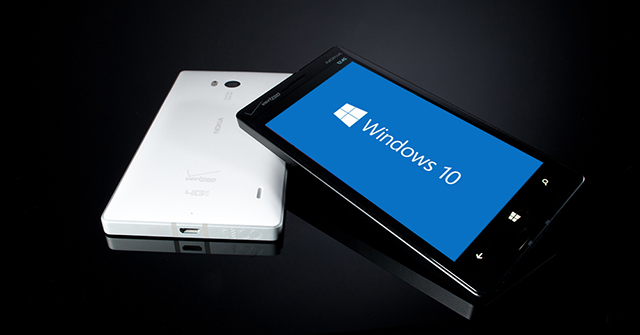
Yesterday Microsoft’s Gabriel Aul teased a new Windows 10 Mobile Insider Preview Build was on the horizon, and today it arrives to those Insiders on the Fast ring.
Microsoft has been rather preoccupied with the PC and tablet version of its new OS over the past couple of weeks (understandably) but now it’s back to business as usual on the development of the Mobile edition.
The list of improvements and fixes is quite extensive in the new Build:
- General improvement in overall stability and performance.
- You can now set the Lock screen and background image from within the Photos app.
- We fixed an issue where apps installed on SD cards weren’t working after a reboot.
- We have improved Latvian and Chinese inputs.
- We have made improvements to the Kid’s Corner tile layout.
- We have improved reliability of Data Sense notifications.
- Modified Shape Writing algorithm to be less aggressive in suggesting contact names over common words.
- Resolved an issue where Camera would not launch when the phone was locked.
- We fixed an issue where notifications for incoming text messages weren’t appearing.
- We fixed an issue where the touch screen wouldn’t be responsive after ending a phone call on some devices.
- And we fixed an issue where folder tiles have obviously overlapping text.
But there are still plenty of issues to be fixed. These are the known major ones in this new build:
- Mobile hotspot doesn’t work in this build. When sharing the Internet from your phone using Mobile Hotspot, devices will fail to get a valid IP address from your phone and will show no internet access.
- Two-factor authentication for your MSA with a phone number doesn’t work in this build. If you reset your phone and go through the first run experience, you won’t be able to input more than 2 characters for validating phone or text authentication. If you have a secondary email for two-factor authentication -- you can choose that. As a workaround, add secondary email for two-factor authentication.
- Some phones might spend a long time in the post update migration experience -- just let the phone sit and it should complete this migration.
- Apps that use background audio such as Groove, Podcast, Pandora, etc. will crash when launching after receiving an app update from the Store. Rebooting the device will resolve this issue.
- Some phones with a large number of tiles pinned to the Start screen may get stuck in a state where the device shows "Loading…"; the device will need to be reset or rolled back to Windows Phone 8.1 using Windows Phone Recovery Tool.
- Some apps may fail to update through the Store with the error code 0x80073cf9; uninstalling the application and reinstalling it will resolve this issue.
- The Movies & TV app will not work in this build (video playback is currently broken).
The Insider Hub is also absent in this new build, but it will be returning soon.
Aul says he expects "builds to be out more frequently again as we go forward from here. Our major focus on Windows 10 Mobile right now is on improvements to core quality".
Once you’ve updated your phone to the new build you’ll want to grab the latest app updates from the Store as well.
-

How to fix Windows 10's worst problems
Publié: août 12, 2015, 7:47pm CEST par Wayne Williams

Microsoft is rolling out cumulative updates for its operating system on what appears to be a weekly basis at the moment. These updates fix some problems, but not all. In some cases, they even cause more trouble, and because updates are mandatory, they get installed whether you like it or not.
The sheer number of system configurations out there mean that there are a lot of potential problems for Microsoft to deal with, but the good news is there are plenty of workarounds available to try in the meantime. So if you’re having problems with the new OS, try these solutions.
Sound Woes
This is currently the most widespread problem affecting Windows 10 users, and it’s something we’ve addressed previously. If you are having audio problems, try the suggestions here.
Touchpad Troubles
I’ve had a few issues with my laptop’s trackpad since upgrading to Windows 10 (its accuracy appears to have been thrown out by the update). You can try uninstalling and reinstalling the drivers, and it’s also worth checking with the manufacturer to see if there are any newer drivers available, or coming soon.
Also try adjusting Windows 10’s touchpad settings. Open Start, type 'touch' and hit enter. You can change the delay, and make further tweaks by clicking 'Additional mouse options'.
Windows 10’s support for advanced gestures (tap with three fingers to activate Cortana, for example) is great, so it’s just a shame other issues let it down.
Trapped in Reboot Loop
The first servicing rollup fixed a lot of problems with the OS, and made it faster and more reliable for a lot of users. Unfortunately it also caused some PCs to reboot repeatedly. We covered this issue, and presented a workaround here.
Still No Sign Of Your Windows 10 Upgrade?
Yes, unbelievably there are still people out there waiting for the reserved update to become available on their PCs. You can try forcing the update following this method, but if that doesn’t work your best bet is use the free download tool to update your PC immediately.
Change The Default Apps
If Windows 10 has changed your default application choices to something else -- Chrome to Edge, for example -- it’s easy enough to change them back. We talked about changing the default browser here, and it remains our most popular Windows 10 guide to date.
You can choose your own defaults by opening the Start menu, typing 'default app settings' and hitting enter. You can also change default programs via the Control Panel (because why have one set of Settings when you can have two!). Open the Start menu, type 'Default programs', hit enter and click 'Set your default programs' in the window that opens.
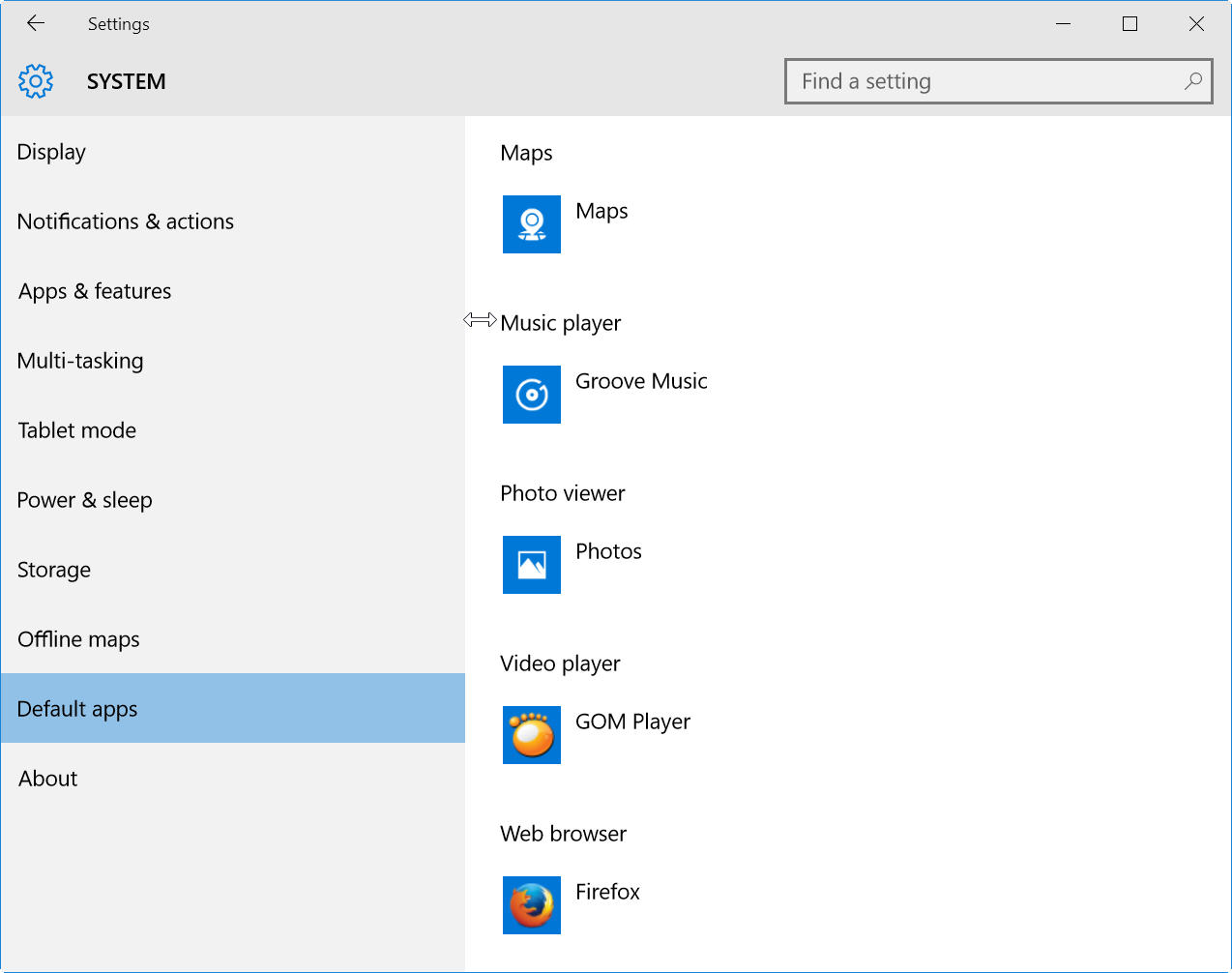
Prevent Bad Updates From Installing
Yes, Windows updates are mandatory, but that doesn’t mean there aren’t ways to block or defer them. Again, this is something we’ve covered before, and you’ll find a selection of delaying tactics here.
Choppy Video
This is a problem I’ve encountered since upgrading to Windows 10. I use GOM Media Player and when I have more than one instance of it playing videos (GOM allows multiple players), the result is really choppy video. Check for an update to your player, and also to updates for your graphics driver. Yesterday’s cumulative update appears to have solved the problem for me as it delivered fresh video drivers.
Missing Browser Graphics
This was another problem I encountered soon after updating. Graphics in both Firefox and Chrome kept vanishing. Yesterday’s Firefox update seems to have stabilised Mozilla’s browser, and the graphics driver update -- so far at least -- has meant no more disappearing graphics for me today. If you’re having the same issues, make sure you’re running the latest browser version and try removing and reinstalling your graphics driver.
Buggy Software
If a program isn’t running like it used to in Windows 10, you will likely have to wait for a new version of the software to arrive to fix the issue. Check on the developer’s site, and see if your problem is mentioned on the forum (if there is one). It’s possible you might find a workaround there.
You can also try running your problem program in Compatibility Mode. Right-click on the application’s executable, select Properties and open the Compatibility tab. Choose the version of Windows the software last ran on properly (Windows 7 or 8).

Other Problems
If you’re plagued with major issues, you can try to wait it out and hope Microsoft delivers updates that fix your woes, or you can try removing and reinstalling problem hardware/software to see if that does the job.
There are a couple of other things to try. You can go to Settings > Update & Security > Recovery and then choose to 'Reset this PC'. This will reinstall Windows while keeping your personal files intact. You can also revert back to your previous OS here if you really can’t face using Windows 10 for any longer.
Performing a clean install -- removing all of the junk accrued under your previous OS -- might solve a whole bunch of problems and is definitely worth considering. We’ve looked at how to do this here.
Image Credit: alphaspirit / Shutterstock
-

Microsoft releases new cumulative update for Windows 10
Publié: août 11, 2015, 11:12pm CEST par Wayne Williams

Windows 10 is a stable OS, but it does have a few problems and glitches still in need of ironing out. New Insider Previews are set to begin arriving shortly, but in the meantime Microsoft is pushing out updates which are designed to improve the functionality of Windows 10 and resolve various vulnerabilities.
Last week the software giant released the first servicing rollup for Windows 10 which fixed several issues (but also introduced new ones for some unfortunate users), and today it releases a new cumulative update.
The KB3081436 update fixes a bunch of bugs and includes some security patches. The full list of vulnerability fixes is as follows:
- 3086251 MS15-092: Vulnerabilities in the .NET Framework could allow elevation of privilege
- 3084525 MS15-091: Cumulative security update for Microsoft Edge
- 3082458 MS15-088: Unsafe command-line parameter passing could allow information disclosure
- 3082487 MS15-085: Vulnerability in Mount Manager could allow elevation of privilege
- 3078662 MS15-080: Vulnerabilities in Microsoft graphics component could allow remote code execution
- 3082442 MS15-079: Cumulative security update for Internet Explorer
The update is available through Windows Update and will be downloaded and installed automatically. If you want to speed things along you can install the update now by going to Settings > Update & Security> Windows Update.
Let me know if it improves Windows 10 for you.
Photo Credit: fotoscool/Shutterstock
-

How to delay and/or block automatic software updates in Windows 10
Publié: août 11, 2015, 8:40pm CEST par Wayne Williams

As you’ll know, Microsoft has made updates mandatory in Windows 10. When updates are pushed out, the new operating system installs them automatically. Whether you want it to or not. This should be a benefit, as it means no more unpatched PCs at risk from serious vulnerabilities, but if the software giant rolls out an update that causes problems for users -- as has already been the case in several instances -- there’s no easy way to avoid it.
Windows 10 Pro users can defer updates, but Home users don’t have that luxury. Thankfully if you need to delay or block software updates in Windows 10, there are several ways to do so, regardless of which version of the OS you're running.
The first way is to use the 'Show or hide updates' troubleshooting tool (aka KB3073930) which we’ve already covered previously. It’s very easy to use, you just run it and select the updates to block. Updates you choose to hide won’t be installed. The problem is it doesn’t work for every update. Last week’s servicing rollup caused some users to be stuck in a reboot loop. This wasn't a problem that the tool could help with.
Another option is to use the 'Metered connection' feature. Turning this on fools Windows 10 into thinking you’re on a non-broadband connection (i.e. accessing the internet via a tethered mobile) and delays downloading and installing updates. To turn this on, click Start, and type 'Change Wi-Fi settings'. Hit enter. Click 'Advanced options' and toggle 'Metered connection' to on. This only works if you’re on a wireless network. If you have an Ethernet connection, the option isn’t available.
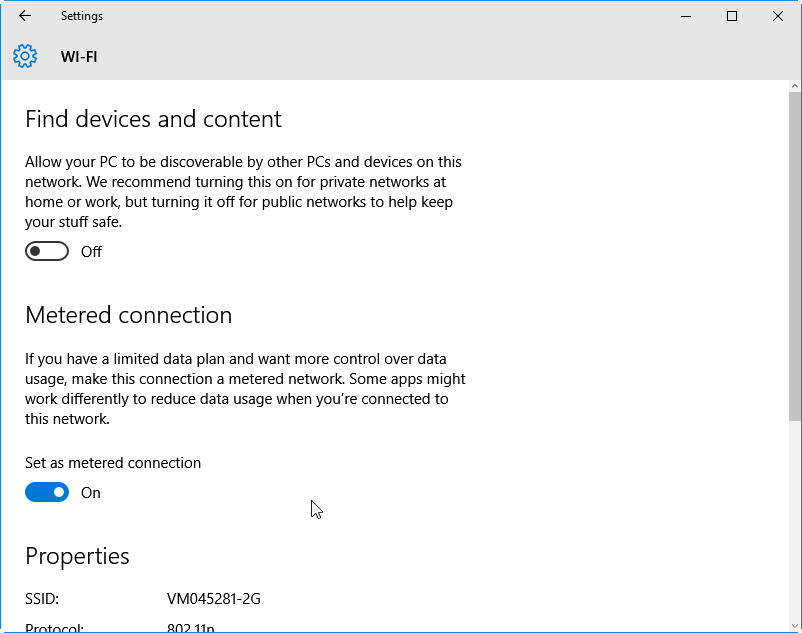
If you have Windows 10 Pro, you can defer updates under Start > Settings > Update & Security. Click 'Advanced options' and check 'Defer upgrades'.
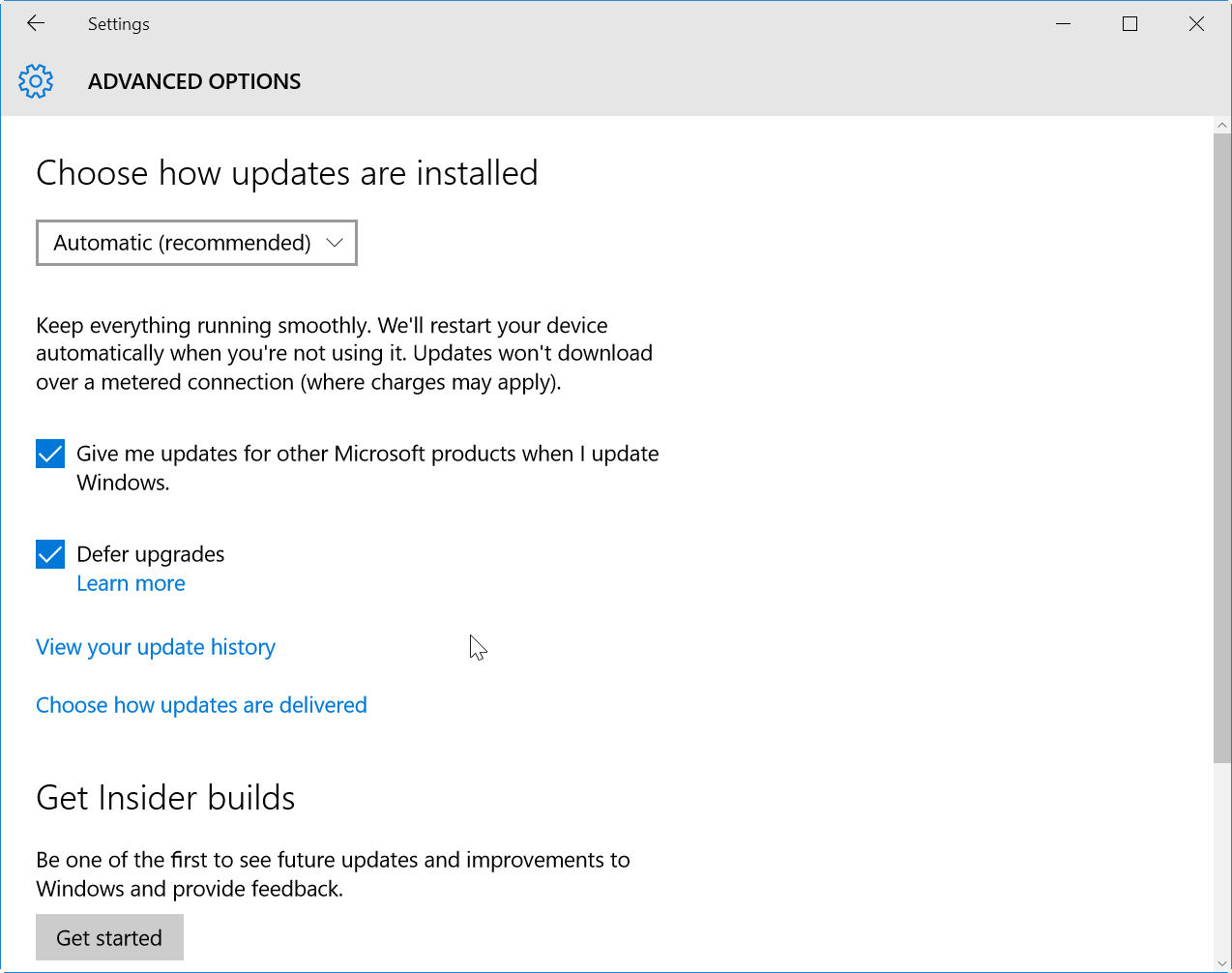
Windows 10 Pro users also have another option, and that’s to use the Group Policy Editor (this isn’t available in Windows 10 Home, but is included in the Professional, Enterprise, and Education editions). Hit Windows + R and type 'gpedit.msc' into the Run box. Hit enter. Go to Computer Configuration > Administrative Templates > Windows Components > Windows Update.
Double-click on 'Configure automatic updates'. In the window that options, select 'Enabled'. Use the drop down box below to change the setting from 'Auto download and notify for install' to 'Notify for download and notify for install'. Apply and OK the change.
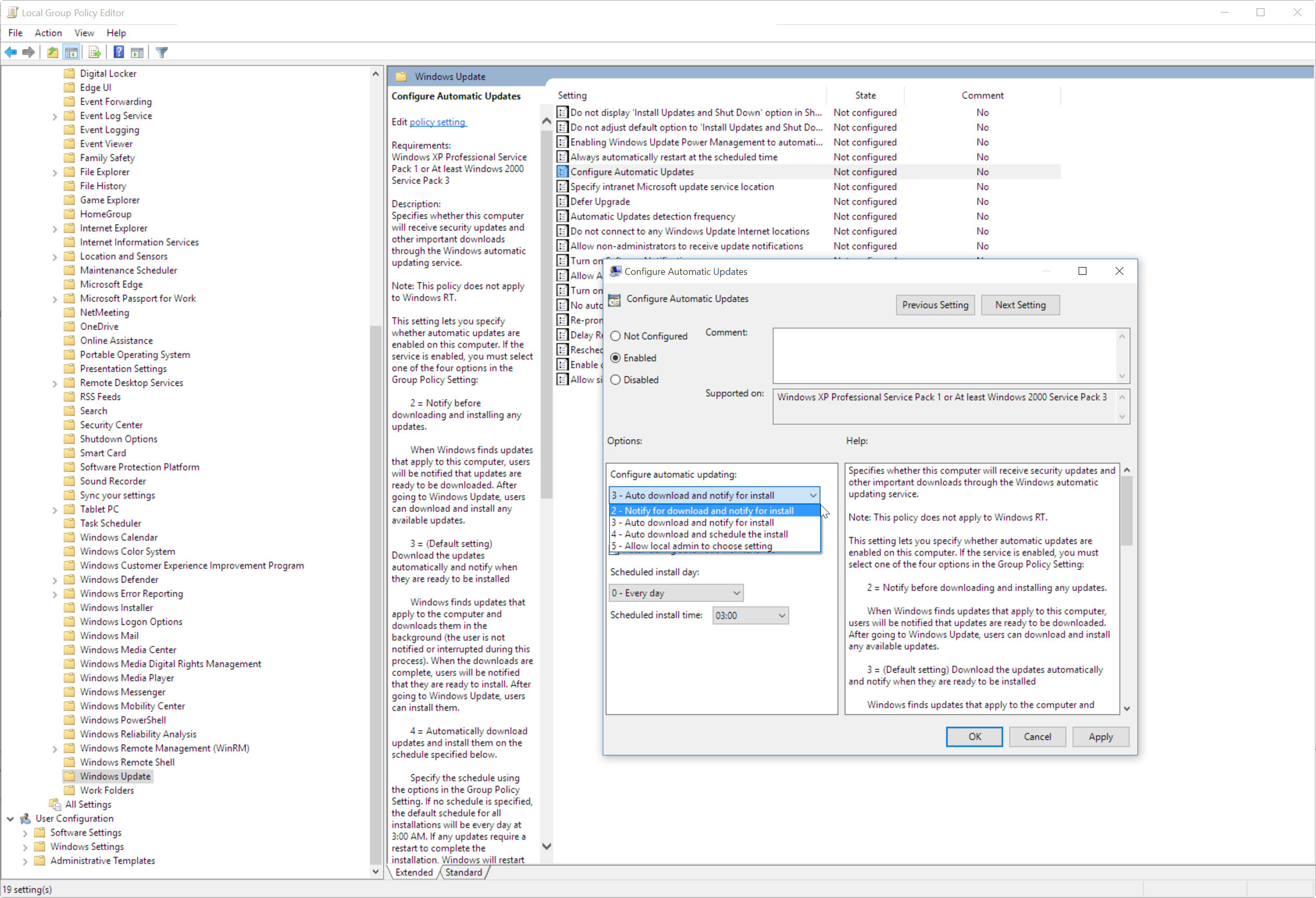
Photo Credit: Viorel Sima/Shutterstock
-

How to change Microsoft Edge's default download folder
Publié: août 11, 2015, 7:38pm CEST par Wayne Williams
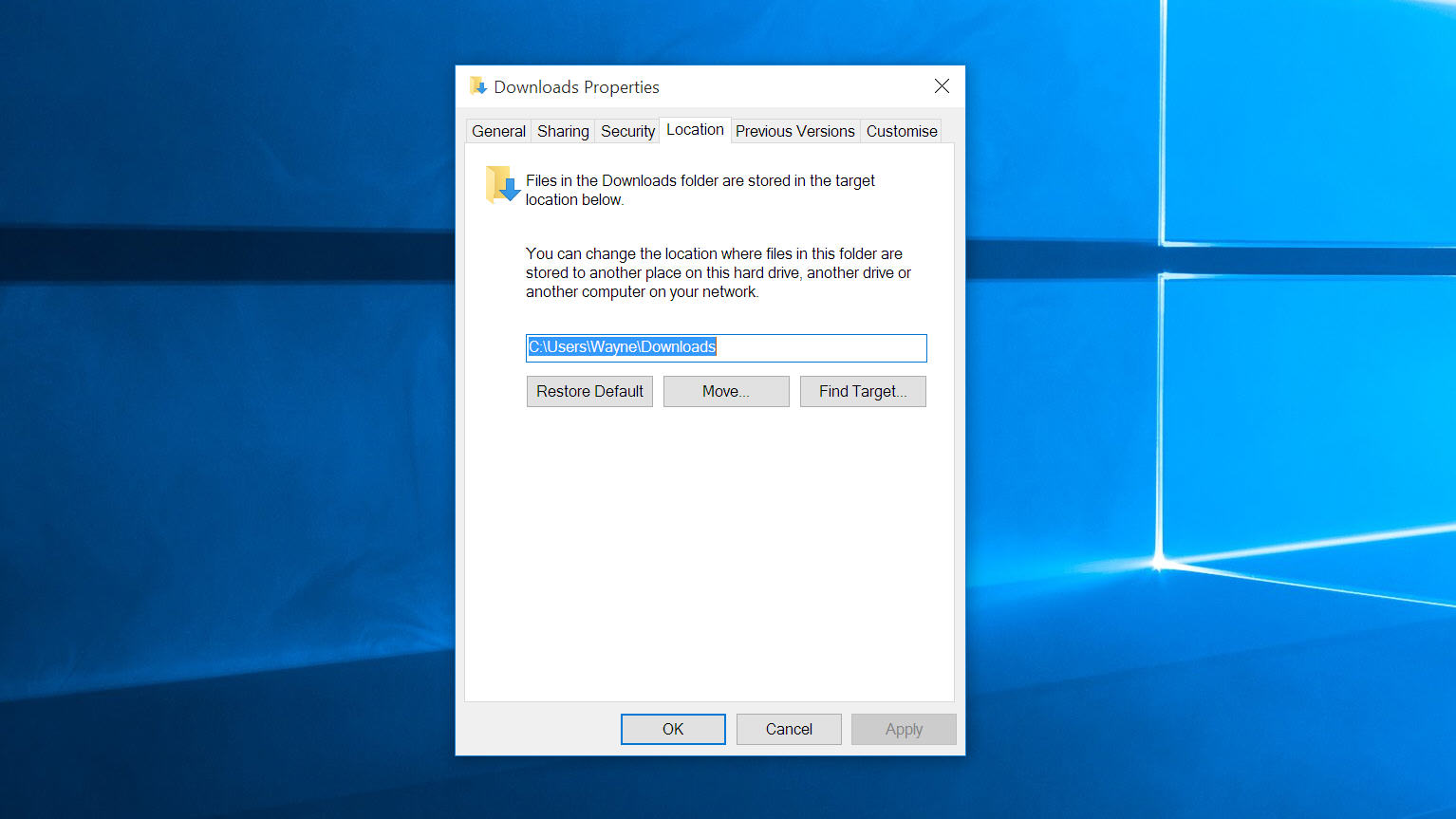
Microsoft’s new modern browser certainly has potential, but Edge is far from a finished product. It lacks major features, including support for add-ons, and anyone using it is going to find it difficult to change certain browser settings. While you can change the default search engine, the process for doing so is far from intuitive. We explained the steps you need to take here.
But what if you want to change the default download location? Surely this is something that can be done easily in Settings, right? Nope. You can change the download folder, just not in Edge itself.
There are two ways to do this. The first is in File Explorer. Launch it and you’ll see a Downloads folder on the left. Right-click it and select Properties. Click the Location tab, and enter a new path. Click Apply. This creates a new download location. If you want to move the existing one (taking any completed downloads with it), click on Move, choose a new folder location and say Yes.
You can use the same method to change the location of other system folders in File Explorer.
The second option requires a registry tweak. Launch regedt, and navigate to
HKEY_CURRENT_USER\SOFTWARE\Microsoft\Windows\CurrentVersion\Explorer\User Shell Folders
Locate %USERPROFILE%\Downloads on the right. Double-click the entry and change the value to a new location. Restart your PC.

-

Customize Windows 10's Start menu with these third-party apps
Publié: août 10, 2015, 9:39pm CEST par Wayne Williams
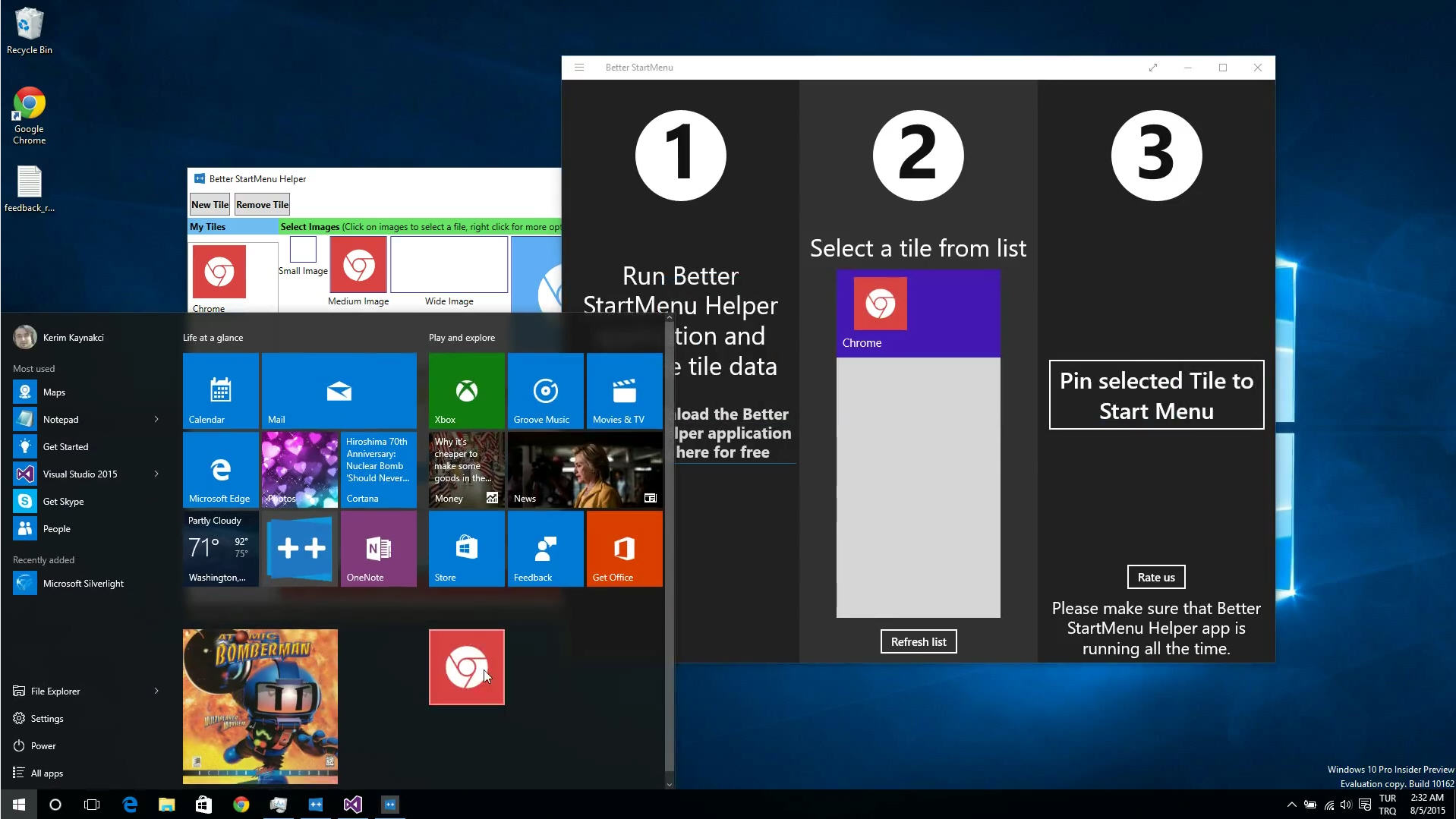
Microsoft’s operating systems have always been easy to customize, and Windows 10 is no exception. We’ve already shown you how to make changes to the Start menu, modify Windows 10's title bar color, automate login and bypass the lock screen, and more. But what if you want to go way beyond the basics? Well there are already third-party tools available that will let you make much bigger design changes to Windows 10 than Microsoft usually allows.
With the right apps you can customize the look of the tiles in the Start menu (not simply resize them and toggle the Live Tile feature on or off) and even redesign the icons of built-in apps and use your own artwork (or someone else's).
If you want to create your own custom Start menu tiles, there’s TileCreator. This isn’t as easy to use as it could be. Firstly you need to grab the Windows app, and then the TileCreatorProxy which will bypass certain Windows 10 restrictions (you need to run it as an Administrator).
The app is very much a work in progress, and at the moment will only let you make changes to square apps (Small and Medium), but support for other sizes is coming soon. The TileCreator XDA Developers page will tell you everything you need to know to get started.
See also: The best alternative Start menus for Windows 10.
Another option to consider is Better StartMenu. This costs $2.99 although there is a trial version available with no limitations.
Like TileCreator you need to download the app and a Helper program. You don’t need to install the latter. Just unzip and run it. The Helper is used to handle tile clicks.
This app does allow you to create and customize tiles of any size.
If you’re not particularly artistic you can grab tile images to use from the web. Better StartMenu has a list of resources here.
Watch the video below to see how to get started.
If you have any recommendations for alternative customization apps, please share them in the comments below.
-

Windows 10's forced cumulative update (KB3081424) causing endless reboots, but there is a solution
Publié: août 10, 2015, 5:54pm CEST par Wayne Williams

Forcing updates on all users must have seemed like a good idea in the Windows 10 planning meetings -- no more PCs at risk from unpatched vulnerabilities -- but already the mandatory updates are causing major headaches for many users.
Even before Windows 10 officially launched, there was an update (KB3074681) that caused crashes in File Explorer, and NVidia driver updates that were breaking some people’s computers. Last week’s servicing rollup fixed various bugs and issues, but for some users it actually caused their PCs to go into a reboot loop.
The problem is the cumulative update, KB3081424, is failing to install properly on some computers. Affected users report that after the update downloads, it requests a reboot to install, then gets part way through the installation, reboots, continues and gets a little further, reboots again, announces there’s a problem, rolls things back, then reboots once more. And because updates are mandatory, the process starts all over again.
See also: Microsoft pushes out a big update for Windows 10
While Microsoft has released a tool that you can use to block bad updates, it doesn’t seem to work in this case. Fortunately there is a workaround.
The problem appears to be caused by the failed install writing a bad entry to the Windows registry, and this, in turn, prevents the update from installing the next time it tries. To get around this issue you have to delete some registry keys.
Click Start, type regedit, and hit enter to launch the Windows registry editor.
You should backup the registry before proceeding, just in case making the following changes causes you problems. Highlight ProfileList, right-click, select Export and enter a backup name.
Once backed up, navigate to: HKEY_LOCAL_MACHINE\SOFTWARE\Microsoft\Windows NT\CurrentVersion\ProfileList
With that done, Scan through the ProfileList IDs. Ignore the ones ending in 18, 19, and 20. If you have two or more entries starting with S-1-5-21, then this fix may work for you. If you only have one entry that begins with S-1-5-21, then this fix won't work, and you'll have to try something else. Click on ProfileImagePath for each of the S-1-5-21 entries, and look for users that no longer exist in the registry. If you're not sure which users are valid, click Start, type Computer Management and hit enter. Under Local Users and Groups browse the list of Users. Delete any of the S-1-5-21 keys which shouldn't be there. As with any registry editing, make sure you only delete something if you're comfortable it's safe to do so.
Close regedit and reboot.
Afterwards (or instead of) you can try manually installing the update from:
You can find out more about the error, and possible solution here.
Image Credit: Syda Productions/Shutterstock
-

How to remove the OneDrive entry from File Explorer in Windows 10
Publié: août 10, 2015, 9:32am CEST par Wayne Williams

Microsoft's cloud storage service OneDrive is baked into Windows 10 and forms a key part of the new operating system. However, if you prefer to use a different service, like Google Drive, or Dropbox, you may not appreciate the OneDrive entry being forced on you in File Explorer.
The OneDrive icon sits just below Quick Access (we’ve already looked at how to remove Quick Access from File Explorer here) and removing it is easily done, you just need to make a quick registry tweak.
To hide the icon, press Windows + R and type regedit into the Run box. Hit enter and Navigate to
HKEY_CLASSES_ROOT\CLSID\{018D5C66-4533-4307-9B53-224DE2ED1FE6}
Double-click on System.IsPinnedToNameSpaceTree and change the value to 0.
Log off or restart your PC. That’s it, the OneDrive entry is now gone. You can get it back by repeating the process and changing the value back to 1.
This tweak obviously doesn’t disable OneDrive integration, just removes the entry in File Explorer.
-

Microsoft pushes out a big update for Windows 10
Publié: août 5, 2015, 7:45pm CEST par Wayne Williams

There haven’t been many updates for Windows 10 since Microsoft launched its new operating system last week, but today the software giant is rolling out a cumulative update designed to "enhance the functionality of Windows 10 through new features and improvements".
If you’ve been experiencing problems with the new OS, as I have, then this update may go some way to overcoming them.
The cumulative update, KB 3081424, contains all of the previously released fixes (see KB 3074683), as well as some new ones. There are no security-related changes.
The full list of updates can be viewed here, and it’s extensive, if rather unexciting. Although there has been talk of this being Windows 10 Service Release 1 (SR1), Microsoft's Gabriel Aul says it doesn't has a name, as far as he knows, and is "just a cumulative servicing update".
You can update your Windows 10 installation now by going to Settings, Update & Security, Windows Update. Even though it's a ~325MB update it should download and install very speedily, and you will need to restart your PC afterwards to action the changes.
Hey #WindowsInsiders, there's a new servicing rollup available now on WU: [https:]
— Gabriel Aul (@GabeAul) August 5, 2015
Photo Credit: fotoscool/Shutterstock
-

Clean up after a Windows 10 upgrade and regain loads of disk space
Publié: août 4, 2015, 8:13pm CEST par Wayne Williams
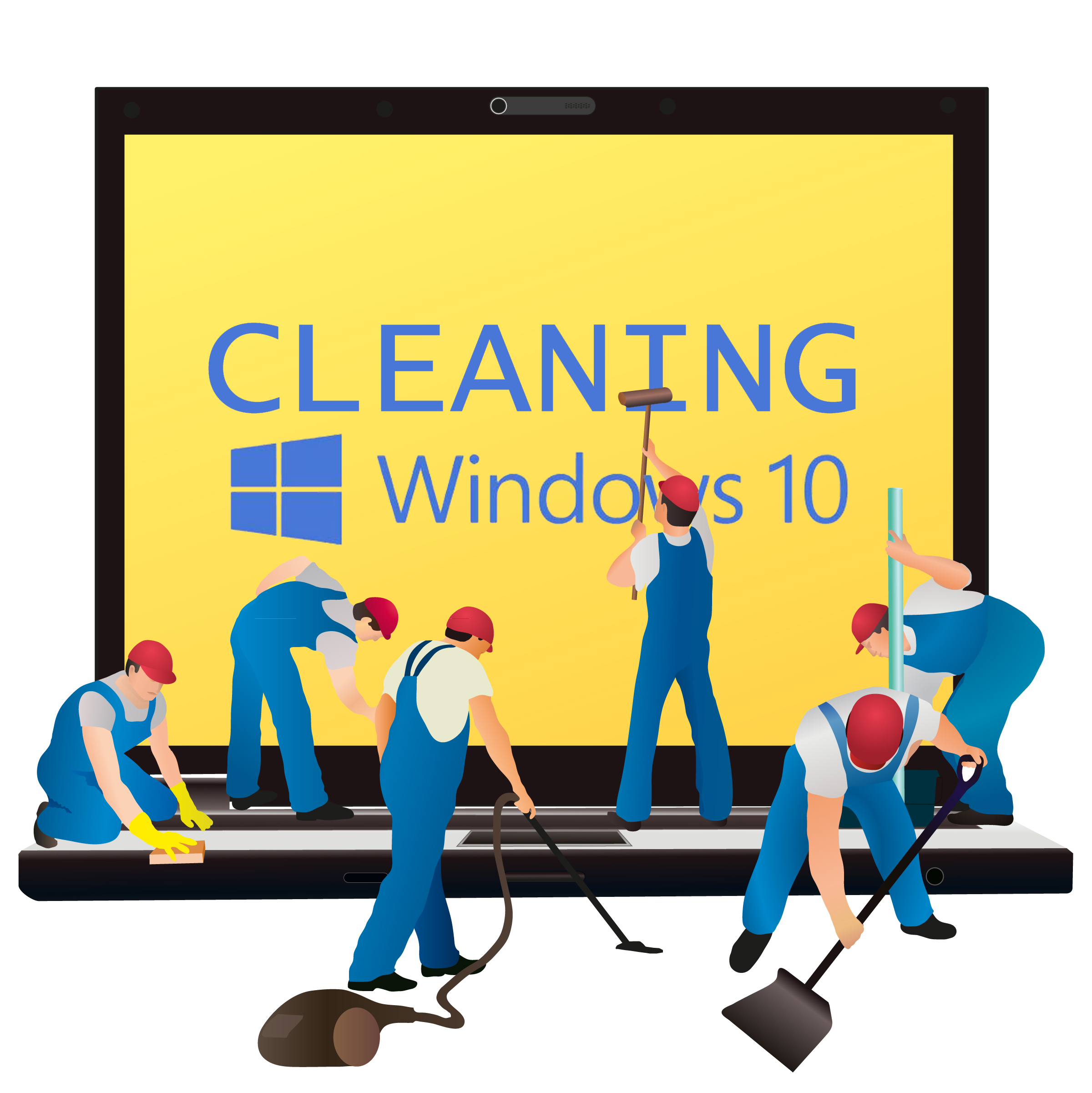
Windows 10 itself has moderate hard drive requirements -- around 16 GB for the 32-bit OS, and 20 GB for 64-bit version -- but the upgrade process can leave behind loads of temporary files that can really impact on your free space.
Browse the root of your system drive, and you’ll probably find two sizable directories -- $Windows.~BT, and $Windows.~WS, as well as a Windows.old directory created during the upgrade. Wondering if you can, or should remove these? It’s a question of lot of people are currently wondering.
While you can just delete large folders, the best way to regain space is by using the built in Disk Cleanup tool.
Click Start and type 'Disk Cleanup'. Right-click the application that appears, and select 'Run as administrator'. Select the drive you want to clean up -- this should be your system drive -- and click OK.
The tool will calculate how much space can be saved and then present you with a list of items that can be cleaned, including some very large ones.
In the list you’ll see 'Temporary Windows installation files' and 'Previous Windows installations'. Checking those will free up a ton of space -- 22.19GB in my case. Of course removing 'Previous Windows installations' will prevent you rolling back your system to the OS you had before Windows 10, so make sure you’re happy with the new operating system before doing so.
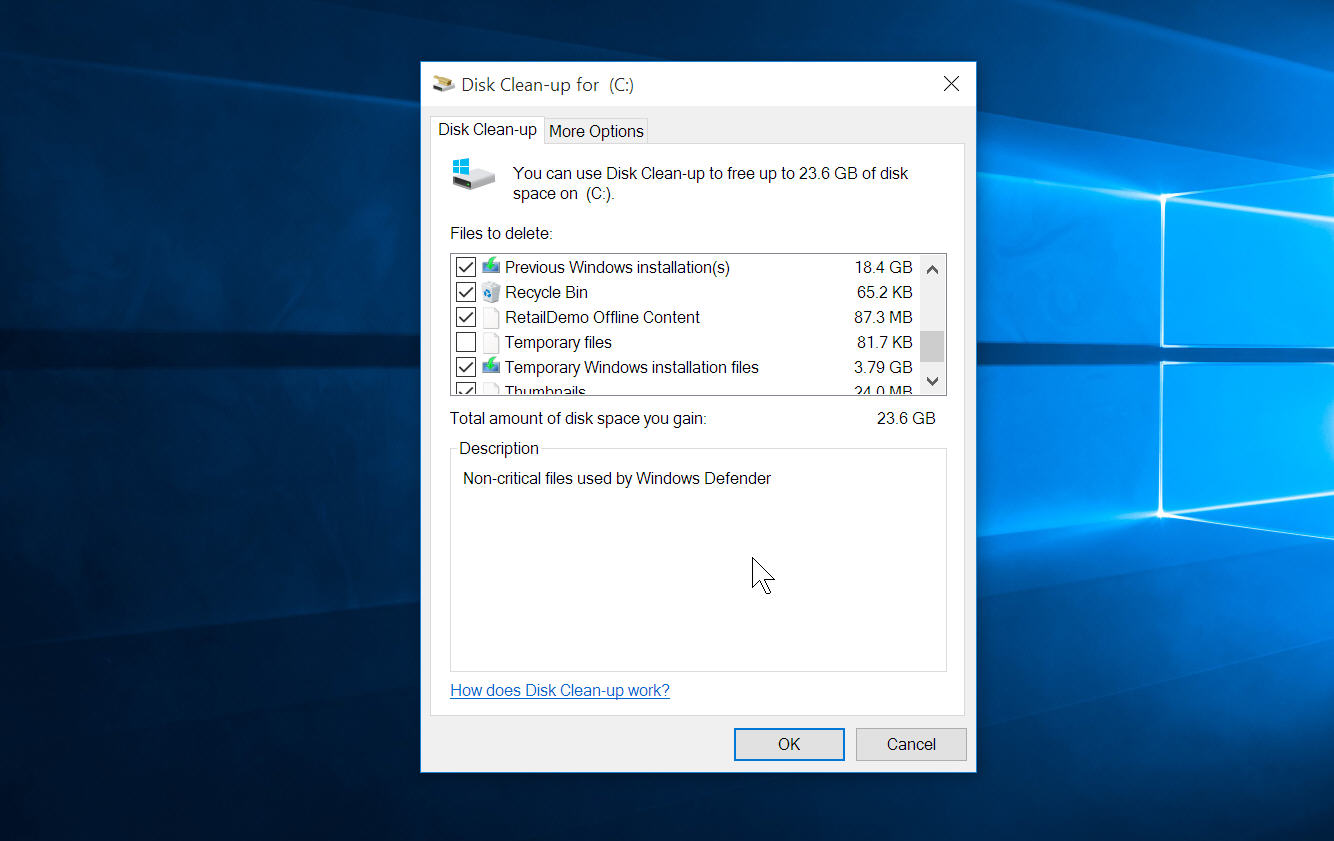
The 'Temporary Windows installation files' entry will clean out everything in the $Windows.~BT folder, but not in the $Windows.~WS directory. The latter folder is created when the installation files for Windows 10 are downloaded as a result of reserving your upgrade through the Get Windows 10 tool. At the moment, Disk Cleanup doesn’t target this particular folder.
$Windows.~WS is also used during a restore process and Microsoft says you should keep it in case it’s needed (the software giant also recommends keeping Windows.old for the same reason), however, you can delete it manually, and won’t experience any day-to-day problems if you do so.
Really, when cleaning up after an upgrade, you have to decide how badly you need the space you’ll save. If you have a very large system drive, it may be worth leaving those folders untouched, as they’ll come in handy in the event of problems. If space is a premium, remove them. It’s unlikely you’ll miss them, and you can always download and create your own installation media should you need to.
Photo credit: Sakhal / Shutterstock
-

Microsoft Surface 3 and Surface Pro 3 now come with Windows 10 preinstalled
Publié: août 4, 2015, 4:10pm CEST par Wayne Williams
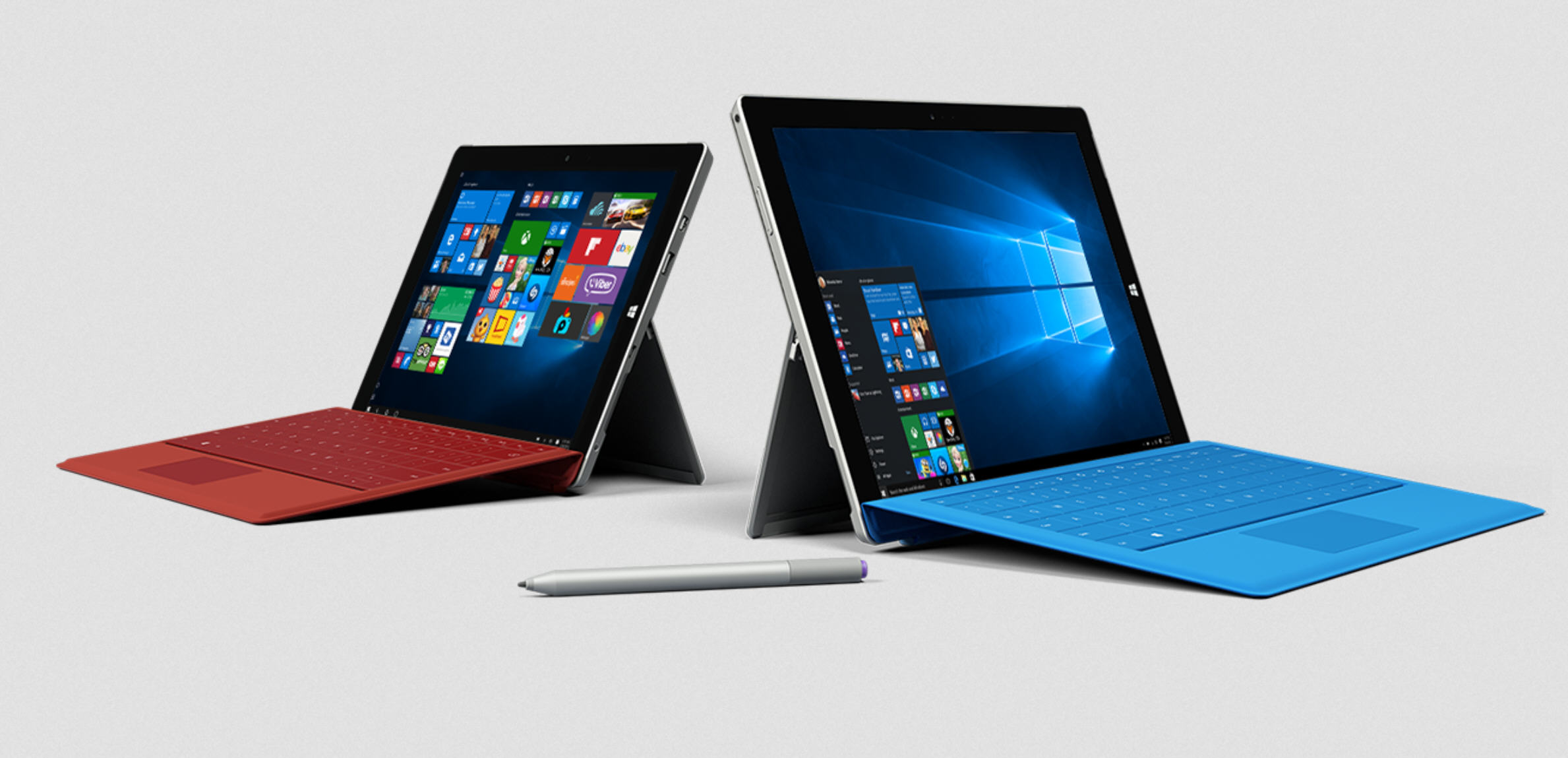
If you’ve been thinking of buying either Surface 3, or Surface Pro 3, but have been waiting for Windows 10 to arrive, now is the time to get your wallet out.
Microsoft has started shipping both of its slates with Windows 10 preinstalled. Surface 3 comes with Windows 10, while Surface Pro 3 has Windows 10 Pro onboard.
Surface 3 comes in a choice of configurations -- 64GB with 2GB RAM, and 128GB with 4GB RAM. There are Wi-Fi only, and Wi-Fi + 4G LTE models offered, although the LTE ones aren’t currently available.
Surface Pro 3 is offered in even more variations -- 64GB with 4GB RAM and Intel Core i3 1.5GHz processor, 128GB with 4GB RAM and Intel Core i5 1.9GHz processor, 256GB with 8GB RAM and Intel Core i5 1.5GHz processor, 256GB with 8GB RAM and Intel Core i7 1.7GHz processor, and 512GB with 8GB RAM and Intel Core i7 1.7GHz processor.
If you buy a Surface Pro 3 today, you can enjoy a sizeable discount as there is currently $150 off the price of select models. The 256GB Core i5 is $1149 down from $1299, the 256GB Core i7 is now £1399 down from $1549, and the 512GB Core i7 will set you back $1799, instead of $1949.
-

How to activate Windows 10's secret God Modes
Publié: août 3, 2015, 6:03pm CEST par Wayne Williams

Windows 7 introduced a useful hidden God Mode that displays all of the admin tools and control options on a single screen. This feature was carried over to Windows 8.x, and the good news is, because Microsoft has yet to phase out Control Panel, it also works just fine in Windows 10.
It’s very easy to action God Mode -- you just need to create a folder and give it a special name -- and there’s actually quite a few alternative God Modes available. Here’s what you need to do.
To activate God Mode, right-click the desktop and select New > Folder. Highlight this folder, press F2 and name it:
GodMode.{ED7BA470-8E54-465E-825C-99712043E01C}
Hit enter. Open that folder and you’ll have instant access to a wide range of system settings.
If one God Mode isn’t enough for you, there are several other options available. Follow the same process as above, but use one of the following alternative strings:
Default Programs.{17cd9488-1228-4b2f-88ce-4298e93e0966}
My Computer.{20D04FE0-3AEA-1069-A2D8-08002B30309D}
Network.{208D2C60-3AEA-1069-A2D7-08002B30309D}
All Networks For Current Connection.{1FA9085F-25A2-489B-85D4-86326EEDCD87}
Performance.{78F3955E-3B90-4184-BD14-5397C15F1EFC}
Programs and Features.{15eae92e-f17a-4431-9f28-805e482dafd4}
Location Settings.{00C6D95F-329C-409a-81D7-C46C66EA7F33}
Power Settings.{025A5937-A6BE-4686-A844-36FE4BEC8B6D}
Printers.{2227A280-3AEA-1069-A2DE-08002B30309D}
Icons And Notifications.{05d7b0f4-2121-4eff-bf6b-ed3f69b894d9}
Firewall and Security.{4026492F-2F69-46B8-B9BF-5654FC07E423}
All NET Frameworks and COM Libraries.{1D2680C9-0E2A-469d-B787-065558BC7D43}
Application Connections.{241D7C96-F8BF-4F85-B01F-E2B043341A4B}
Credentials and Logins.{1206F5F1-0569-412C-8FEC-3204630DFB70}
Photo Credit: Stocksnapper/Shutterstock
-

Windows 10 will be a great operating system -- when it's finished
Publié: août 3, 2015, 2:19pm CEST par Wayne Williams

It could be said, with Windows now a service, Windows 10 will never truly be finished, but the truth is the version of the new operating system that’s out now is a long way from being polished enough for prime time. It’s like an Insider Preview build that’s been released entirely in error.
In an effort to wash away the stench of Windows 8, Microsoft has chosen to rush release Windows 10, and the result is an operating system that is clearly still very much a work in progress. The new OS isn’t anywhere near as half-baked as Windows 8 was when that launched, but there are still far too many issues to be ignored. Put bluntly, it's a bit of a mess in places.
It’s Schizophrenic
One of the things that really bugs me about Windows 10 is the duplication. There’s Settings and Control Panel, both offering two ways to do similar, or identical things, but wrapped up in entirely different interfaces. How do you know which you need? Good question. Want to change your screen resolution? Windows will push you to use the new UI, but the old Change the appearance of your displays version still exists.
Microsoft should have chosen one method for changing settings and customizing the OS and stuck with it, wiping out all traces of the other.
One annoyance I’ve encountered is that certain legacy buttons don’t work. Clicking on Set Associations in Internet Explorer doesn’t let you set the file types that the browser opens by default -- as you might reasonably expect -- but instead displays a message stating "To change your default apps, go to Settings > System > Default apps". Clicking OK doesn’t take you there, just closes the message. Thanks for your help Microsoft, let me go grab a pen.
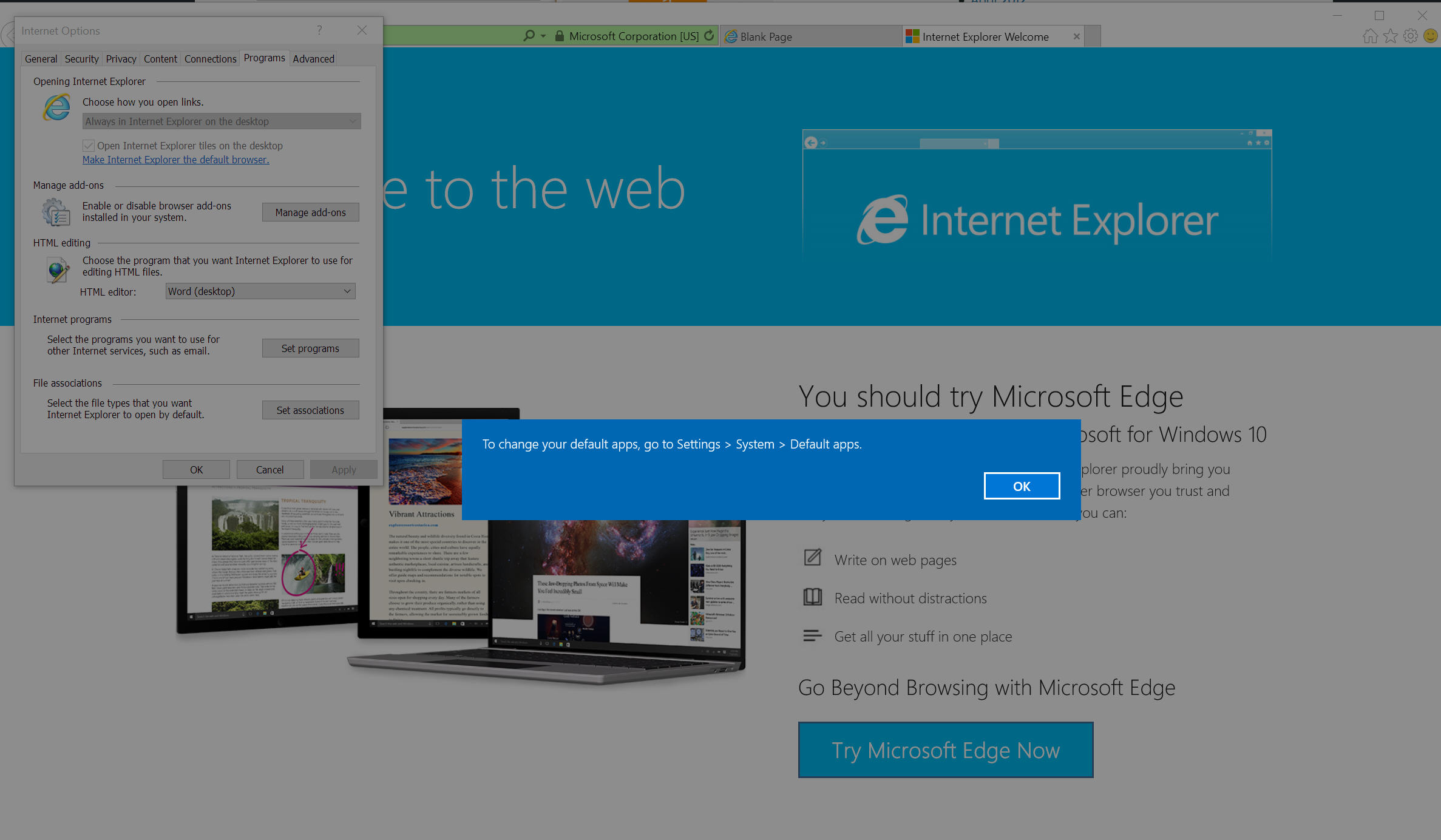
And having two browsers is stupid too. Just include one browser that works. Edge will be quite good when it’s finished, I suspect. But it is clearly more of a proof of concept than a fully formed browser at the moment, lacking support for extensions and so on.
Want to uninstall a program? Well, if it’s an app, you can do it through Settings > Apps & Features. If it’s a legacy app (program, dammit!), then you may be able to uninstall it that way, but I’ve found many applications don’t show up there. Go to the old Programs and Features interface, and every program you can uninstall is listed there. Except apps. They don’t appear in that list at all.
There are small, but fundamental design inconsistencies throughout, including (but not limited to) old icons cropping up next to new ones and at least four entirely different styles of context menu.
These aren’t problems unique to Windows 10 of course. Windows 8.x had the same issues. Microsoft just hasn’t bothered to fix them. But with Windows as a service, maybe it will get around to it. One day.
It’s Buggy
Since the upgrade I have a problem on my PC with graphics going missing in browsers, and Firefox seems to hate Windows 10. It just crashes without warning. My graphics drivers are fully up to date, as are my browsers. Maybe I need to uninstall and reinstall everything, or do a clean Windows 10 install.
But clearly I’m not the only person experiencing issues with the new OS. We’ve posted loads of guides and stories on BetaNews covering how to do things with Windows 10, but what do you think the most popular article on the site currently is? Overcoming sound problems. It’s such an in-demand article, we’ve covered the issue twice.
A brand new OS is always going to be buggy -- there are so many different types of hardware, so many configurations, that it’s to be expected -- but I feel Microsoft should have taken a little longer to iron out potential issues before declaring Windows 10 done.
Final Thoughts
Microsoft passed quality assurance over to millions of Windows Insiders but yet quality is far from assured in Windows 10. There’s lots to like about the new OS, and lots to dislike too. As my headline says, I think Windows 10 will be great, when it’s "finished". I just have no idea when that might be.
Have you encountered problems with Windows 10? Share your experiences and frustrations in the comments below.
Photo Credit: Haryadi CH/Shutterstock
-

Free up space in Windows 10 by removing unwanted core apps
Publié: août 2, 2015, 6:25pm CEST par Wayne Williams

Windows 10, like previous versions of Microsoft’s operating system, comes with a selection of bundled programs -- or apps these days -- which you probably have no need for.
Uninstalling apps is a pretty straightforward process, you can do this through the Start menu, but removing core applications isn’t as easy. The uninstall option is not available, meaning you’re stuck with a bunch of apps you don’t want. You can however, remove these using PowerShell.
Open the Start menu, and type 'PowerShell'. Launch it by hitting enter. Run the 'Get-AppxPackage -User username' command (replacing 'username' with your actual Windows 10 username). This will display all of the installed applications.
Locate an app you want to remove and copy the actual PackageFullName for it.
Run the 'Remove-AppxPackage PackageFullName' command. If you want to remove the People app from Windows 10, for example, you’d run 'Remove-AppxPackage Microsoft.People_1.10241.0.0_x64__8wekyb3d8bbwe'.

You should exercise a degree of caution (and common sense) when removing core apps as some may be important to the system’s integrity. If you don't know what an app is, or does, then leave it alone! It likely won't be taking up much space, and it's better to be safe than sorry.
Photo credit: Sakhal / Shutterstock
-

Windows 10 doubles its usage share in a couple of days
Publié: août 1, 2015, 10:13am CEST par Wayne Williams

NetMarketShare has released its monthly desktop operating system usage share figures, showing the fluctuations of the various iterations of Windows. All versions of Microsoft’s operating system registered drops in July, except of course Windows 10 which was launched at the tail end of the month.
Only being available for a few days meant the new OS was never going to shift the needle significantly, but there were enough upgraders (Microsoft says 14 million in the first 24 hours) to double the operating system’s share.
According to the analysis firm, Windows 10 now has 0.39 percent of the market. It was 0.16 percent in June, when it was only available to Windows Insiders. It should have been quite a bit more than that, but the staged rollout means a large portion of users haven’t received their upgrades yet.
August will, of course, be the big one for Windows 10, although there will be plenty of users who won’t even be offered the chance to install the new OS until the middle of the month, so again, usage share will be lower than it should be.
Elsewhere, Windows 7 dropped 0.23 percentage points in July, and is now on 60.75 percent, down from 60.98 percent in June.
Windows 8 went from 2.90 percent to 2.77 percent, a drop of 0.13 percentage points. Windows 8.1 dropped 0.03 percentage points, going from 13.12 percent to 13.09 percent.
Combined, Windows 8.x lost 0.16 percentage points in the month, not much of a fall.
Windows XP, the OS that refuses to die, lost just 0.24 percentage points in July, but still has 11.74 percent of the market.
Most of the drops recorded can be attributed to summer, rather than the Windows 10 effect (since NetMarketShare records usage). Next month will definitely be the interesting one.
Photo credit: Ermolaev Alexander/Shutterstock
-

The essential collection of Windows 10 guides -- everything you need to get started, fix annoyances, and more
Publié: juillet 31, 2015, 5:14pm CEST par Wayne Williams
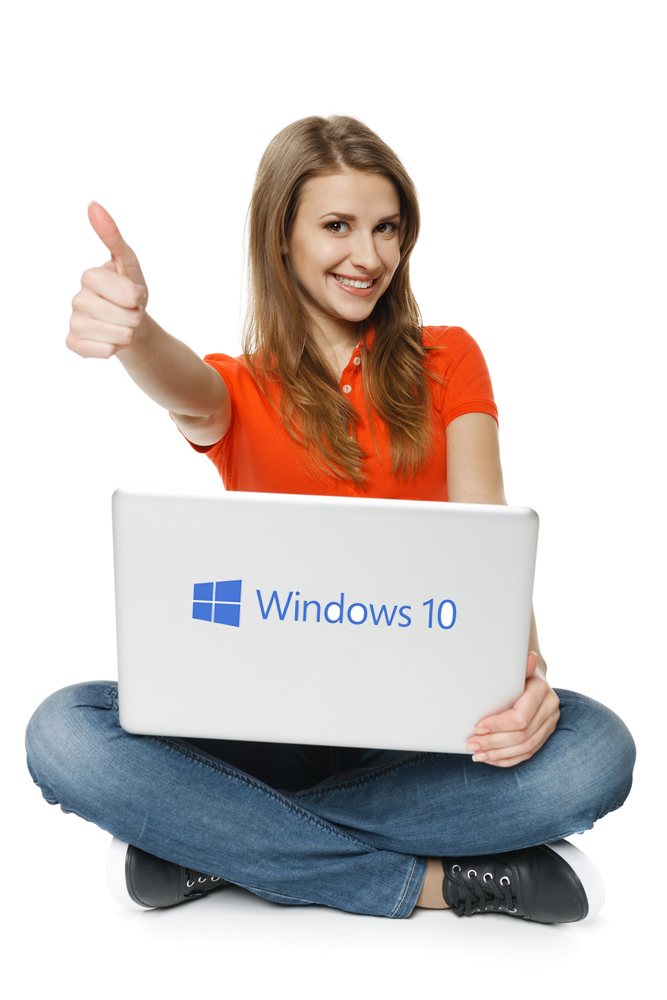
Here on BetaNews we’ve posted a wealth of how-to guides designed to help you master Windows 10. While the new OS isn’t difficult to get to grips with, certain elements are far from intuitive.
With all the news that’s been happening, you may have missed some of these guides -- especially ones from before Windows 10 launched -- so we've put together this one-stop shop for all the helpful information posted so far. Below you'll find out how to download Windows 10, get the ISO, create installation media, install Windows 10 on Mac or in a virtual environment, change the default browser or the default search engine, block automatic updates, and much, much more. As new guides are added, so this article will be expanded to include the latest content.
How to manually trigger your reserved Windows 10 upgrade
If you’ve reserved Windows 10 but it hasn’t yet downloaded, this trick may work for you.
How to download Windows 10 and create your own installation USB flash drive or DVD
Microsoft’s new tool offers the easiest way to upgrade an existing Windows 7/8.x system (especially if the reserved upgrade hasn’t yet arrived on your PC), and also create your own installation media which you’ll need when performing a clean install.
How to create a bootable Windows 10 USB drive
Using Microsoft’s tool is one way to create a bootable Windows 10 USB stick, but there are others.
How to clean install Windows 10
If you want to do a fresh install of the new operating system, this is the guide to follow.
How to install Windows 10 on Oracle VirtualBox -- no Windows key required
If you want to run Windows 10 in a virtualized environment, follow these instructions.
How to install Windows 10 on your Mac
Mac users haven’t been forgotten. Here’s how to install Microsoft’s new OS on Apple hardware.
Automate login and bypass the lock screen in Windows 10
Not a guide for the security conscious among you, but if you want to go from boot up straight to the desktop without having to login, this is the trick you want.
How to change the default search engine in Microsoft Edge
Not a fan of Bing? Want to use a little search engine called Google instead? This is how.
How to make Firefox or Chrome the default browser in Windows 10
Mozilla’s CEO doesn’t like that Edge is the default browser in Windows 10, and if you don’t either, here’s how to change it.
How to disable Bing Search from Windows 10's Start menu
Don’t want to search from the desktop? This is how to disable the feature. Warning: Will also kill Cortana.
How to stop Windows 10 installing automatic updates
Problem updates surfaced just prior to the Windows 10 launch. Here’s how to use a special tool to block them.
How to change Windows 10's title bar color
Want to customize the look of the Windows 10 title bar? It’s easy when you know how.
How to customize the Windows 10 Start menu
Hate the tiles? Wondering how to change the color scheme? Want to make other tweaks to the Start menu’s look and behavior? We’ve got you covered here.
How to manage notifications in Windows 10
The Action Center could well be your new, favorite source of annoyances. Cut down on unwanted notifications.
How to import iTunes playlists into Groove Music in Windows 10
Currently use iTunes? Want to use Groove Music? This is the simple way to import playlists and music.
Remove 'Quick Access' from File Explorer in Windows 10
Whether you want to just hide Quick Access, or remove it entirely (using a registry tweak) this is how to do it.
Windows 10 has a secret screen recording tool -- here's how to use it
Game bar is a new feature which lets you record gaming videos and other PC activity. Find out more here.
Stop Windows 10 using your internet connection to share updates to other people
Windows 10 uses a P2P style system called Windows Update Delivery Optimization (WUDO) to share updates with other people. This guide will show you how to manage or disable it.
All the Windows 10 keyboard shortcuts you'll need (and a few more)
Keyboard shortcuts make using Windows 10 a quicker, much more fun experience. Learn what you can do here.
The best alternative Start menus for Windows 10
If you don’t like the look of the new Windows 10 Start menu, here are some alternatives to try.
So you've upgraded to Windows 10... ready to leave the Insider program?
All set to say goodbye to being a beta tester for Microsoft? This is how you do it.
Photo Credit: paffy/Shutterstock
-

HP ProBook 455 G2: A low-cost business notebook for Ubuntu lovers [Review]
Publié: juillet 31, 2015, 1:06pm CEST par Wayne Williams
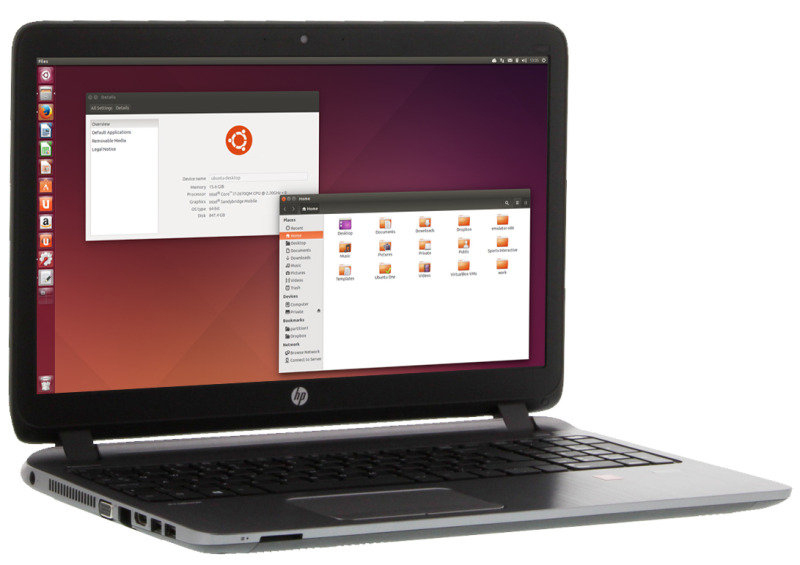
Most of the laptops you can buy come with Windows pre-installed. Obviously the latest batch have Windows 10 on them, with more being announced daily. If you prefer Linux you can either replace Microsoft's operating system with your distro of choice, or set up a dual boot configuration.
Online retailer Ebuyer, however, offers Linux-minded consumers a third option with its range of HP ProBook notebooks that come with Ubuntu pre-installed. There are three models on offer: HP 255, HP 355, and HP 455.
The HP ProBook 455 G2 notebook, which is the one I'm looking at here, is 345mm(w) x 244mm (d) and 25.3mm(h) in size and weighs 2.15KG. It has a 139.6cm (15.6 inch) matte display offering a maximum resolution of 1368x768 (WXGA) and is powered by a quad core AMD A10-7300 processor running at 1.9GHz, with Radeon R6 Graphics.
The notebook comes with a single stick of 8GB DDR3L memory (there's a spare RAM slot inside should you wish to boost this to 16GB) and a 1TB 5400RPM hard drive. Getting to these is just a matter of removing a single screw and sliding the back off.
There's also a built-in DVD writer (I'm always pleased to see one included, even if I have little use for it this days, it can be handy in business situations), 720p webcam, 2x USB 2.0 ports, 2x USB 3.0 ports, one VGA and one HDMI port. There's also a headset jack, Ethernet port, and Kensington lock hole. At the front there’s an SD-card slot, always a welcome inclusion for me.
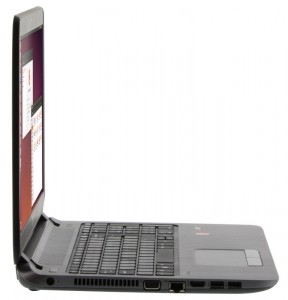
Connectivity comes in the form of 802.11b/g/n wireless and Bluetooth 4.0.
There's a removable 40Wh 4-cell Lithium-Ion battery, which I found lasted for around 8 hours in idle mode and a couple of hours when under load. On average, in a day-to-day situation, you'll probably get around 3-4 hours of use before needing to plug it in.
Looks wise, the notebook is stylish, if slightly nondescript, with a charcoal gray lid and silver trim. The lid does tend to collect fingerprints after a while, but aside from that, it looks good. There's a brushed aluminum plate around the comfortable island keyboard.
Getting started takes a while as Ubuntu requires a first run to get everything setup, and then you'll likely want to update too. If you're familiar with Ubuntu (and I can't really imagine anyone who isn't opting to buy a Laptop with Canonical's OS pre-installed) you'll know what to expect.
The version of Ubuntu is 12.04.5 LTS (Precise Pangolin) 64-bit, which is rather old. I would have expected the notebook to be on 14.04 (Trusty Tahr). The Hardware Enablement Stack (HWE) was out of support as well, which meant a lot more updating than I would have liked.
The quick start leaflet that comes with the laptop explains how to use it but, comically, the instructions are for Windows. However there's a shortcut to a PDF covering Ubuntu to be found on the desktop.
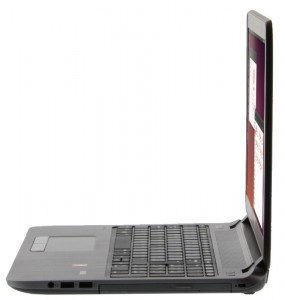
The touchpad is large with two separate buttons below. It's fine overall, although initially clicking and double-clicking was a bit hit and miss. A spot of tinkering with the settings quickly sorted this out.
The speakers are positioned just under the screen, and provide decent audio, with clear and reasonably loud sound.
Obviously this is a business laptop, rather than one for gamers, so performance is average, rather than exceptional, but for the price -- £299.99 including free delivery -- you're not going to be disappointed. In fact if you buy today (31 July), there's a £100 trade in offer which makes it even more of a bargain.
Although it requires a bit of setting up -- you can of course use it without updating if you want to just crack on -- it's a decent, low cost offering that’s definitely worth a look.
-

Remove 'Quick Access' from File Explorer in Windows 10
Publié: juillet 31, 2015, 11:49am CEST par Wayne Williams

When you go into File Explorer in Windows 10 you’ll see a selection of your most frequently accessed folders, and 20 of the most recently opened files.
This is useful if you want quick access to content you’ve been using recently, but if you don’t want all of these links cluttering up File Explorer you can hide the view, or disable it entirely.
To hide Quick Access, open File Explorer and go to View -> Options. Under the General tab, change 'Open File Explorer to' from 'Quick access' to 'This PC'.
To remove the feature entirely, you’ll need to edit the registry. Firstly, hide Quick Access using the step above. Once that’s done, open Regedit as an administrator (press Windows key + R, type 'regedit' into the Run box and hit Enter).
Navigate to: HKEY_CLASSES_ROOT\CLSID{679f85cb-0220-4080-b29b-5540cc05aab6}
Expand it, and right-click ShellFolder. Select Permissions, and click the Advanced button. In the 'Advanced Security Settings for ShellFolder' box, click the 'Change' link, then click 'Advanced', click the 'Find Now' button, and in the 'Search results' box select 'Administrators'. Click OK twice, then Apply, and hit OK until the box closes.
Inside 'ShellFolder', double-click 'Attributes', and change data value to 'a0600000', then click OK.
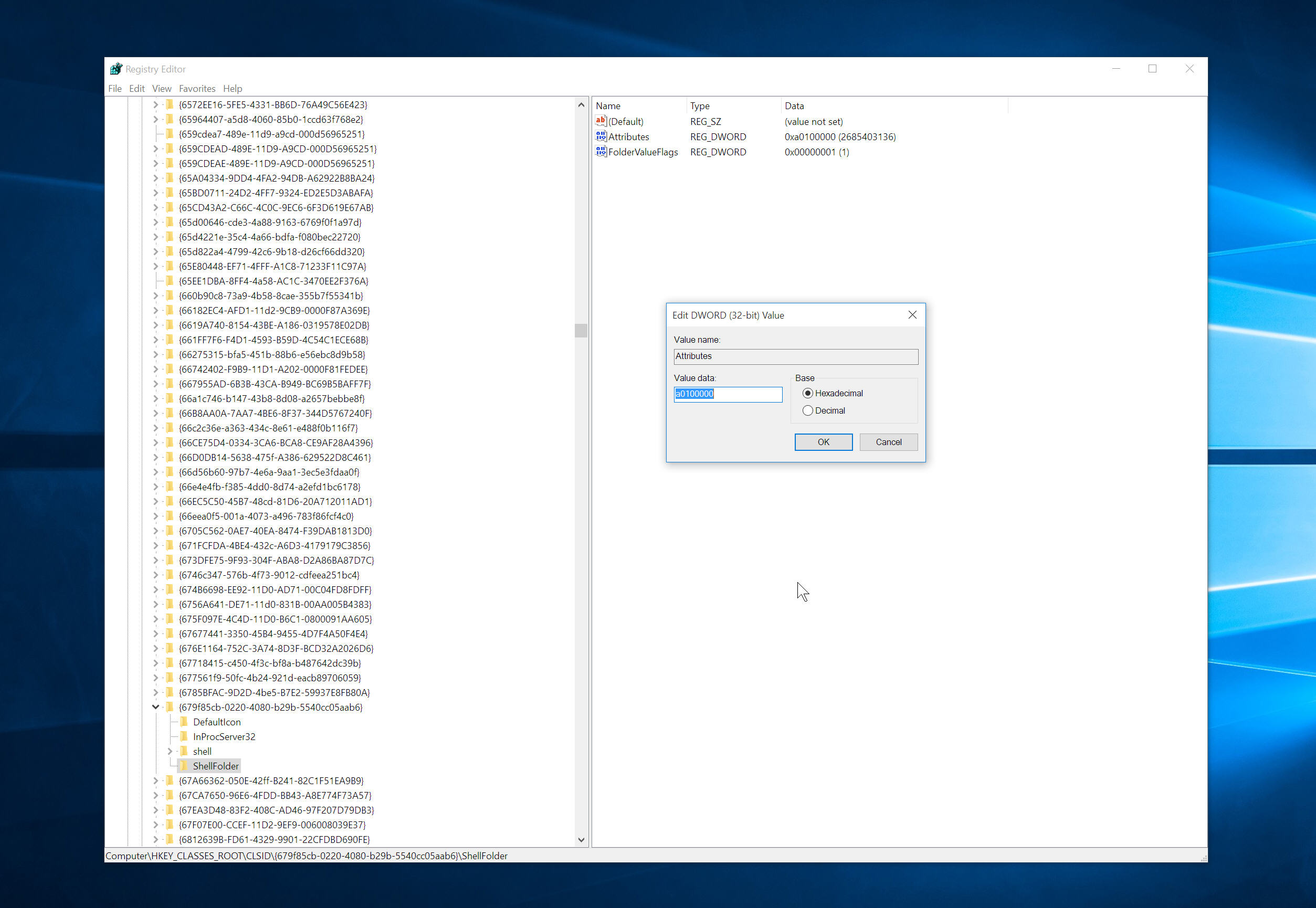
With that done, reboot your PC. When you open File Explorer next time, Quick Access should be gone.
If you decide you want the feature back, repeat the process but change the ShellFolder attributes from 'a0600000' to 'a0100000', and click OK.
Photo Credit: Vladimir Mucibabic/Shutterstock
-

The best alternative Start menus for Windows 10
Publié: juillet 30, 2015, 1:40pm CEST par Wayne Williams
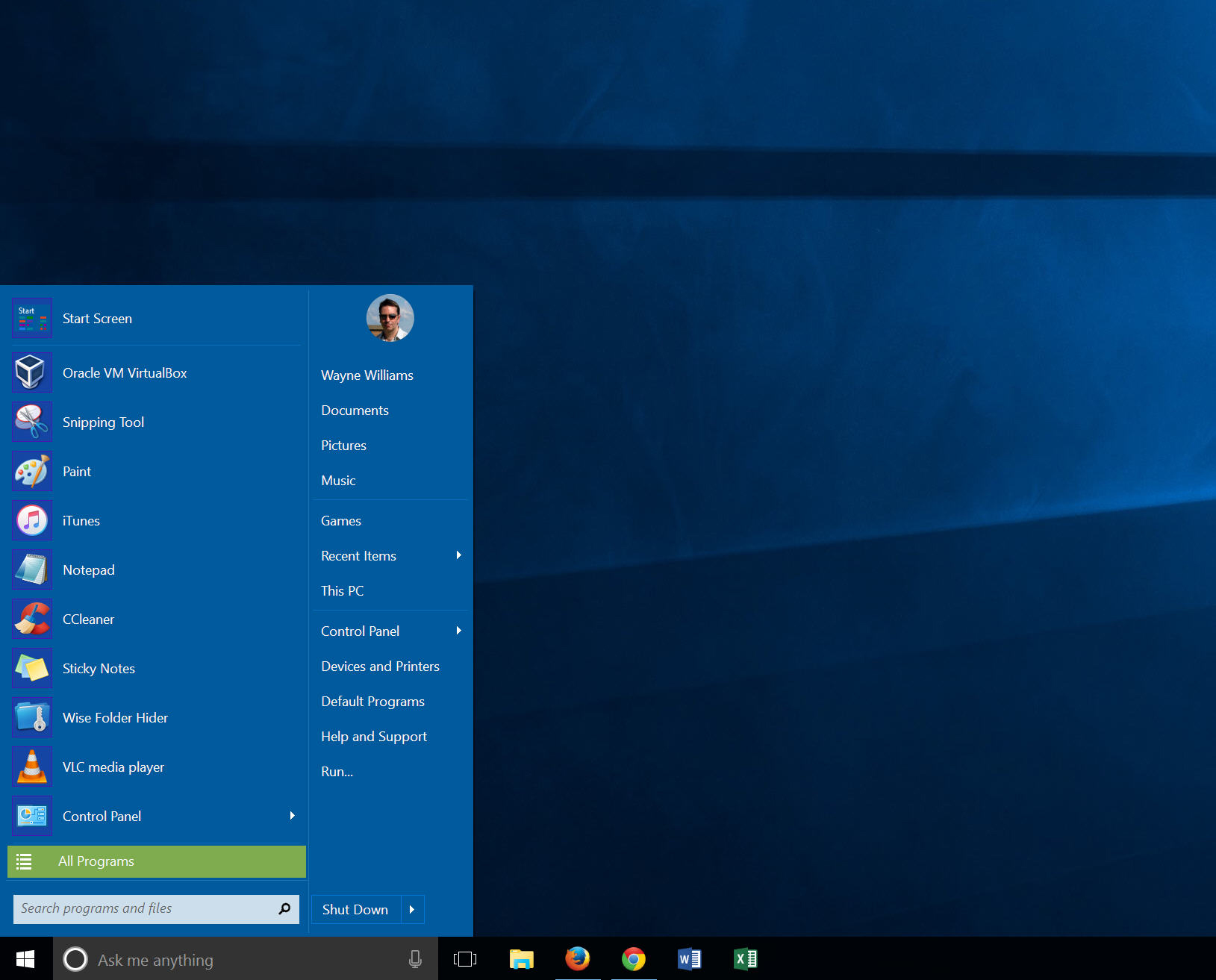
Windows 10 is here, and with it is the Start menu missing from Windows 8.x. The world rejoices. Except not everyone likes the new Start menu which blends the functionality of the Windows 7 menu with the Metro/Modern tiles from Windows 8.
If you’re not a fan of Windows 10’s Start menu (and some people are avoiding the free upgrade purely for this reason), the good news is there are a number of decent replacements available.
Ask any Windows 8 users which is the best Start menu and the chances are they’ll say Classic Shell. It truly is fantastic. It offers a choice of three different menu styles -- Classic, Two Columns and Windows 7 -- which can be skinned to suit your tastes.
It is packed with options, including a dedicated shutdown button, the ability to pin programs directly from Explorer and an enhanced Windows Search function.
Most people will choose this Start menu over all others, but there are further choices to consider.
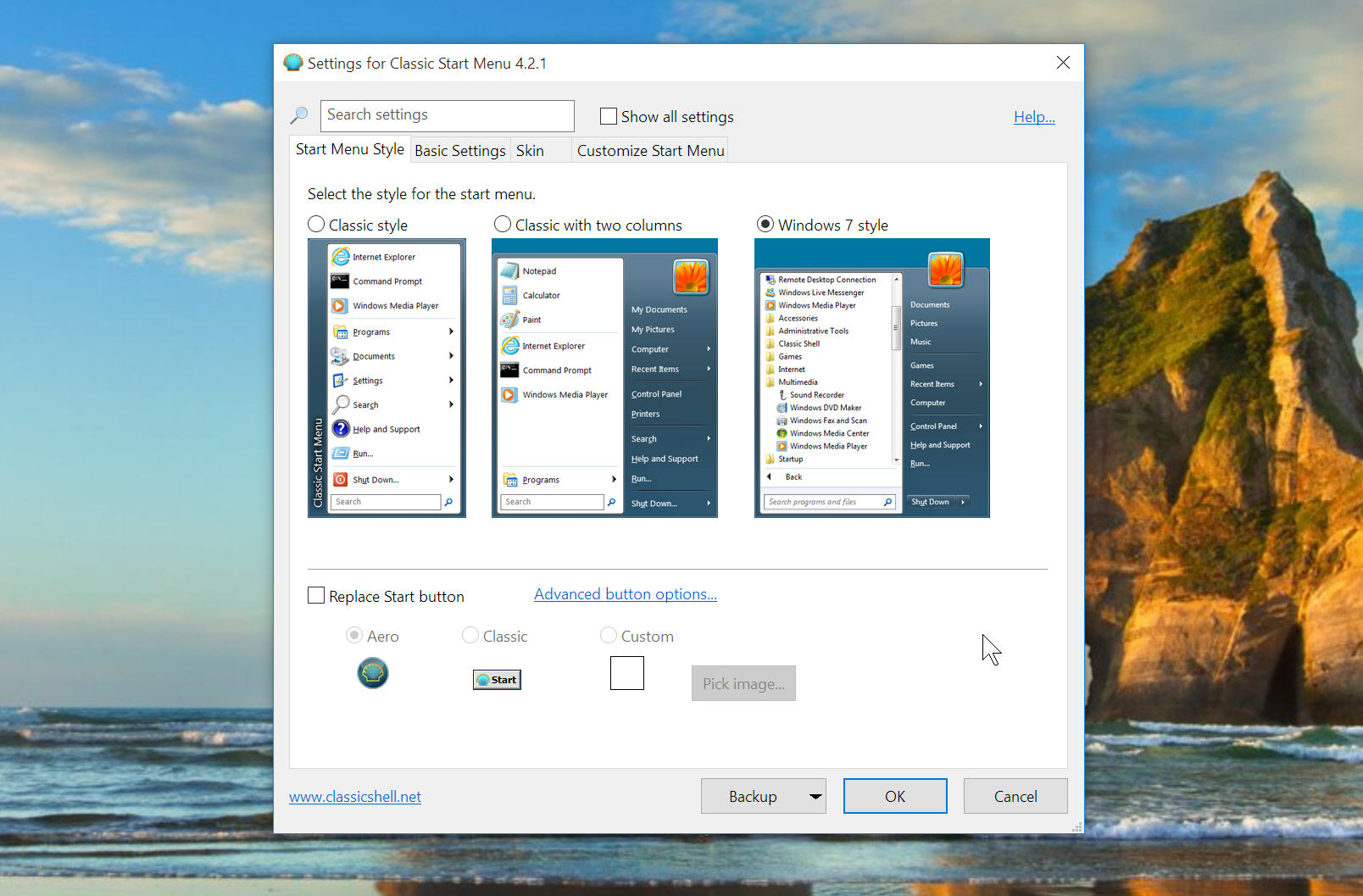
Sure, from the name you might think IObit’s Start menu only works in Windows 8, but it supports Windows 10 too. The program offers a choice of styles. You can opt for the usual Windows 7 look, or go for the Windows 8 design which places the Start (or Apps) screen inside a window on the desktop. It offers a selection of different Start button choices too.
Not the most polished looking of Start menus, it lets you access frequently used applications and pin items. It doesn’t require installation, so you can try it out without risk. It will work with both Windows 8.x and 10.
Stardock’s Windows 10 Start menu replacement lets you choose between classic or enhanced Start menus. There’s unified search for apps, settings and files, and you can access desktop and modern apps from the menu. There’s also a skinnable Start button. It will set you back $4.99, but there is a 30-day free trial. I'm actually a big fan of this particular Start menu and would definitely recommend you at least consider it.
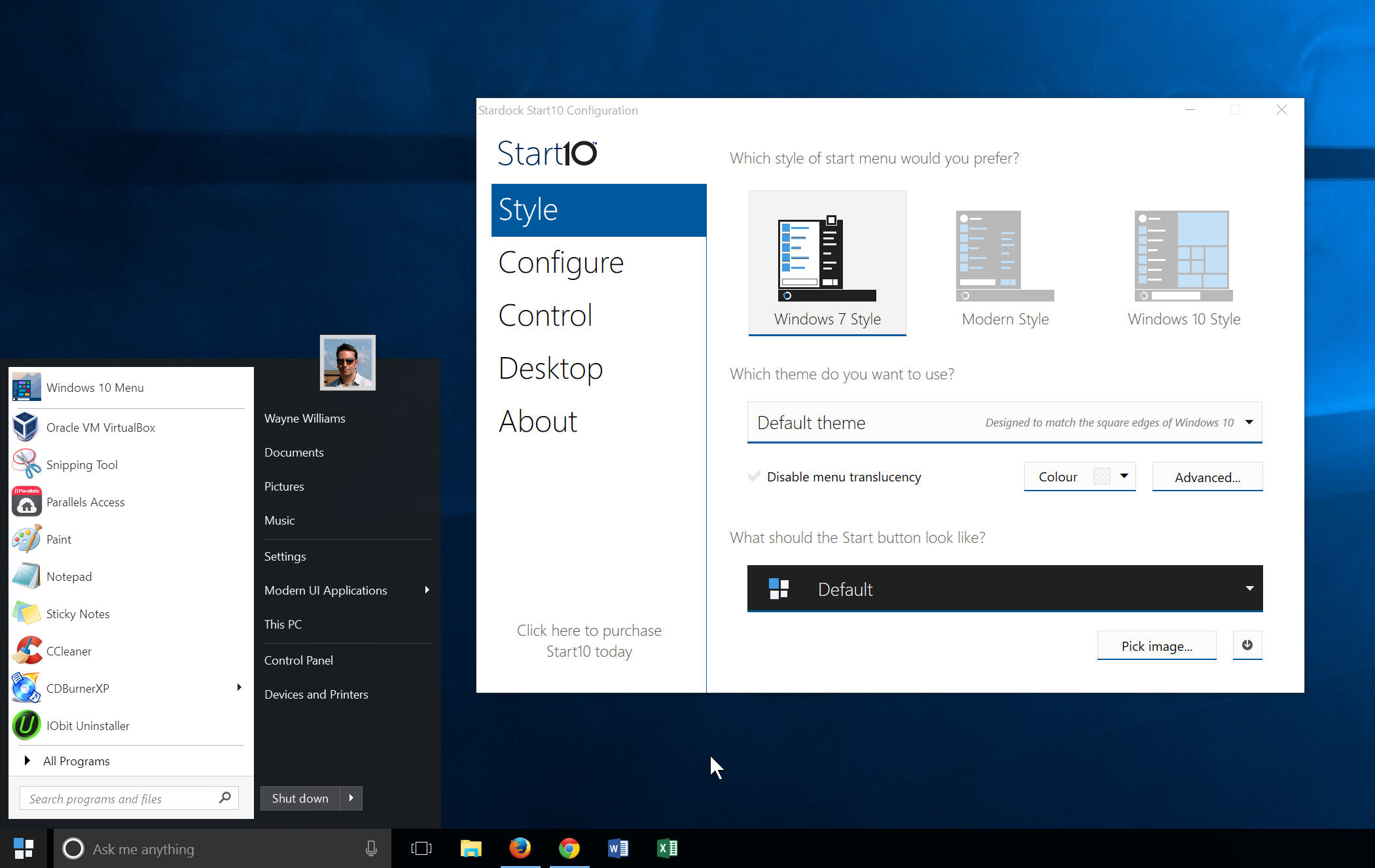
Others
It’s possible that other Start menus designed for Windows 8.x will work with Windows 10, but I’ve chosen to only include ones I know will work with the new OS.
Will you be using a third party Start menu in Windows 10?
-

How to import iTunes playlists into Groove Music in Windows 10
Publié: juillet 30, 2015, 9:50am CEST par Wayne Williams

If you’ve upgraded to Windows 10 you’ll likely have discovered an app called Groove Music. This is the new name for Xbox Music which was included in Windows 8.x.
When you first open the app there’s not much to see. Groove Music is a rather bland looking affair with lots of white space. The app will automatically import music from your PC, although if you’re anything like me, you’ll need to change the location it looks in to get all of your songs and albums added. To do this, and also import iTunes playlists into Groove Music, just follow these instructions:
- If the sidebar menu isn’t open, click the hamburger button at the top right to open it.
- Click the gear button.
- Under 'Music on this PC' you’ll see two options. You can change the default music locations by clicking 'Choose where we look for music'. To import any playlists created using Apple’s software, click 'Import iTunes playlists' and then click the Import button.
Groove Music will search your PC for iTunes playlists and then add them. The process is very quick, although the songs and artwork won’t be added if Groove Music doesn’t know where to look for them.
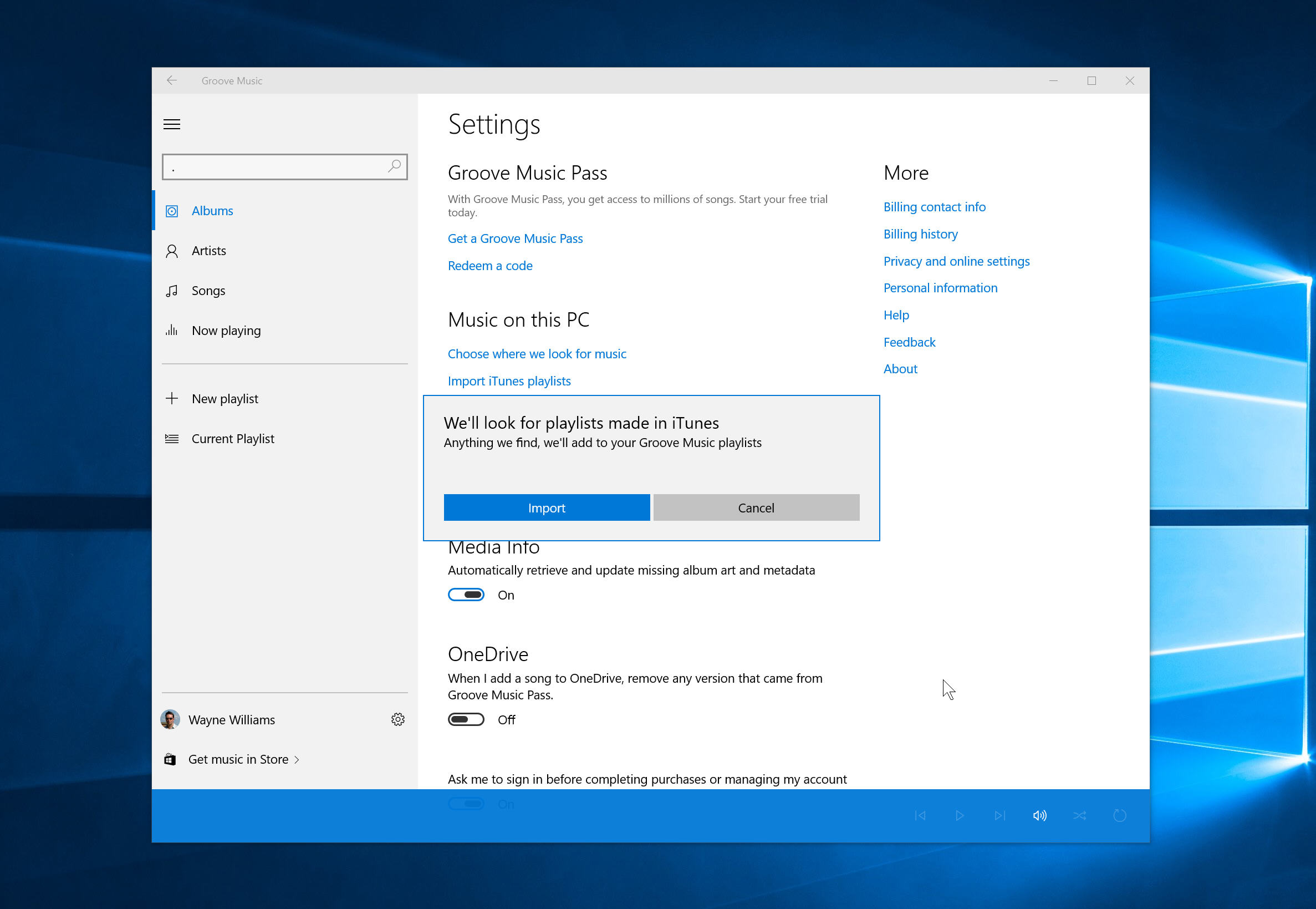
Image Credit: Suphaksorn Thongwongboot/Shutterstock
-

How to disable Bing Search from Windows 10's Start menu
Publié: juillet 29, 2015, 8:57pm CEST par Wayne Williams
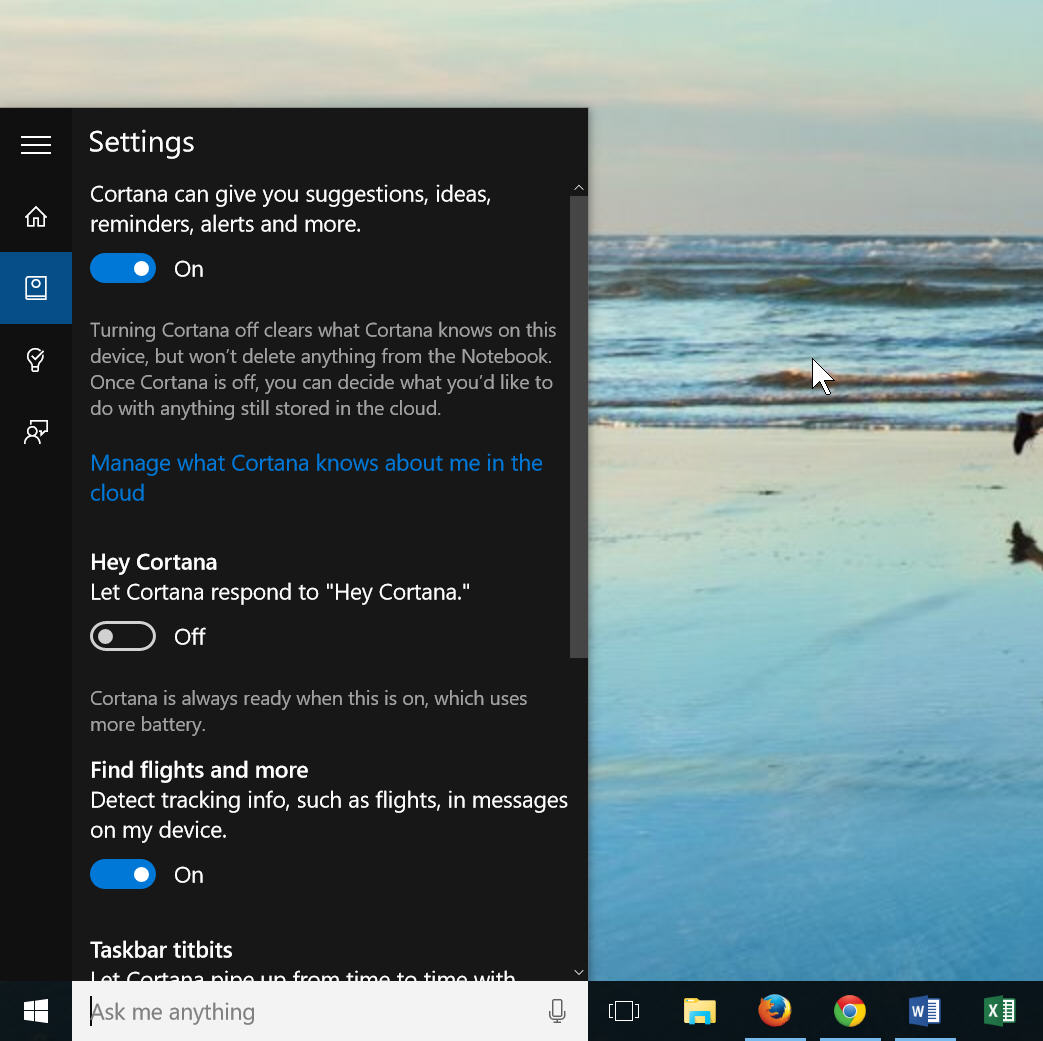
The Windows 10 Search box next to the Start button lets you search through Windows and the web. Type in a query, and the results will appear in your default browser. The first time you do this you’ll see it’s Bing producing the results.
If you don’t mind that, then great. Move along, there’s nothing to see here. But if you’re not a fan of Microsoft’s search engine, you can easily disable this feature. There is one downside however, and that’s you’ll also lose Cortana as well as Bing. If you don’t mind that, here’s what you need to do.
Open the Start menu, and type 'Cortana & Search Settings'. Open the system setting that appears and disable Cortana by flipping the first toggle to off. (If you haven’t set up Cortana you’ll need to do that first).
Once Cortana is disabled an option that says 'Search online and include web results' will appear. Disable this.
Now searches will be confined to just your local system, and you can perform web searches in your browser as always.
-

All the Windows 10 keyboard shortcuts you'll need (and a few more)
Publié: juillet 29, 2015, 7:16pm CEST par Wayne Williams

Forget touch screens, and moving your mouse, if you want to really want to speed through using Windows 10, keyboard shortcuts are where it’s at.
With the right key presses you can snap windows to where you want them, manage virtual desktops, awaken Cortana, and navigate seamlessly through the new OS like a seasoned professional. Just got Windows 10 today? Learn the following shortcuts, and it will be like you’ve been using it your whole life.
There are a ton of keyboard shortcuts, and you can explore them all here, but these are the main ones to familiarize yourself with.
Common keyboard shortcuts
Ctrl + C (or Ctrl + Insert) -- Copy the selected item.
Ctrl + X -- Cut the selected item.
Ctrl + V (or Shift + Insert) -- Paste the selected item.
Ctrl + Z -- Undo an action.
Alt + Tab -- Switch between open apps.
Alt + F4 -- Close the active item, or exit the active app.
Windows key + L -- Lock your PC or switch accounts.
Windows key + D -- Display and hide the desktop.
New keyboard shortcuts
Windows key + A -- Open Action Center.
Windows key + S -- Open Search.
Windows key + Q -- Open Cortana in listening mode.
Windows key + S -- Open Cortana ready for typed input.
Windows key + I -- Open Windows 10’s settings.
Windows key + G -- Open the new Game DVR recorder when a game is running.
Windows key + H -- Open Share Charm.
Windows key + Tab -- Open Task view.
Windows key + Ctrl + D -- Add a virtual desktop.
Windows key + Ctrl + Right arrow -- Switch between virtual desktops you’ve created on the right.
Windows key + Ctrl + Left arrow -- Switch between virtual desktops you’ve created on the left.
Windows key + Ctrl + F4 -- Close the virtual desktop you’re using.
Windows key + Left -- Snaps active window to the left.
Windows key + Right -- Snaps active window to the right.
Windows key + Up -- Snaps the active window to the top.
Windows key + Down -- Snaps the active window to the bottom.
Photo Credit: NinaMalyna/Shutterstock
-

What's your view on Windows 10?
Publié: juillet 29, 2015, 6:16pm CEST par Wayne Williams

So now that a good number of you have installed Windows 10 (obviously a fair few of you will have been Windows Insiders for a while as well), we’d like to hear what you think of it.
The BetaNews audience has never shied away from passing comment on all manner of stories (it’s what we love about you guys) and Windows 10 has divided opinion pretty much from day one. It’s easy to pick holes in a work-in-progress OS, but now that Microsoft has released the completed version, has it changed your view at all? Do you love it, hate it, or sit somewhere in-between?
The installation process for me ran incredibly smoothly on both my main PC and also a slightly aging laptop. The reserved OS never arrived on my primary system, but the free tool solved the problem (I could, of course, have manually forced the update).
There are a few issues I’ve encountered so far -- video playback seems a bit stuttery -- but once I’ve updated a few things I’m sure it will be fine.
Everything else seems to be working as intended, and overall I do like the new OS, even though it will take some getting used to now I'm using it full time.
If you haven’t yet updated to Windows 10, do you intend to, and if not, why not?
This is an open forum, so sound off about anything and everything to do with Windows 10. We’re looking forward to reading your comments!
Photo Credit: Bevan Goldswain/Shutterstock
-

How to manage notifications in Windows 10
Publié: juillet 29, 2015, 5:09pm CEST par Wayne Williams

The new Action Center keeps you informed about what’s going on in Windows 10, providing a single place for all of the notifications from Windows and installed apps, and also informing you about new emails, instant messages, Facebook updates, and much more.
Notifications flash up on screen and come from all sorts of places, and if you’re not careful, you can easily find yourself bombarded with alerts. Fortunately it’s easy to trim down which notifications you see.
Here’s what you need do. First tap or click on the notification icon in the system tray. This will open the Action Center.
Tap or click on All Settings, and select System. Select 'Notifications & actions' from there.
You’ll see a list of Notifications sources:
- Show me tips about Windows.
- Show app notifications.
- Show notifications on the lock screen.
- Show alarms, reminders and incoming VOIP calls on the lock screen.
You can toggle any of those on or off.
Under those are a list of apps that display notifications, and you can toggle those on or off too.
You can also configure quick actions by clicking on notifications when they appear in the System Tray area.
If you find you don’t have long enough to react to notifications when they flash up on screen you can change how long they appear for by going to Ease of Access > Other Options.
Finally, if you want to disable notifications temporarily, you can do so by opening up the Action Center and turning on Quiet Hours. Don’t forget to disable it afterwards.
-

How to customize the Windows 10 Start menu
Publié: juillet 29, 2015, 4:54pm CEST par Wayne Williams
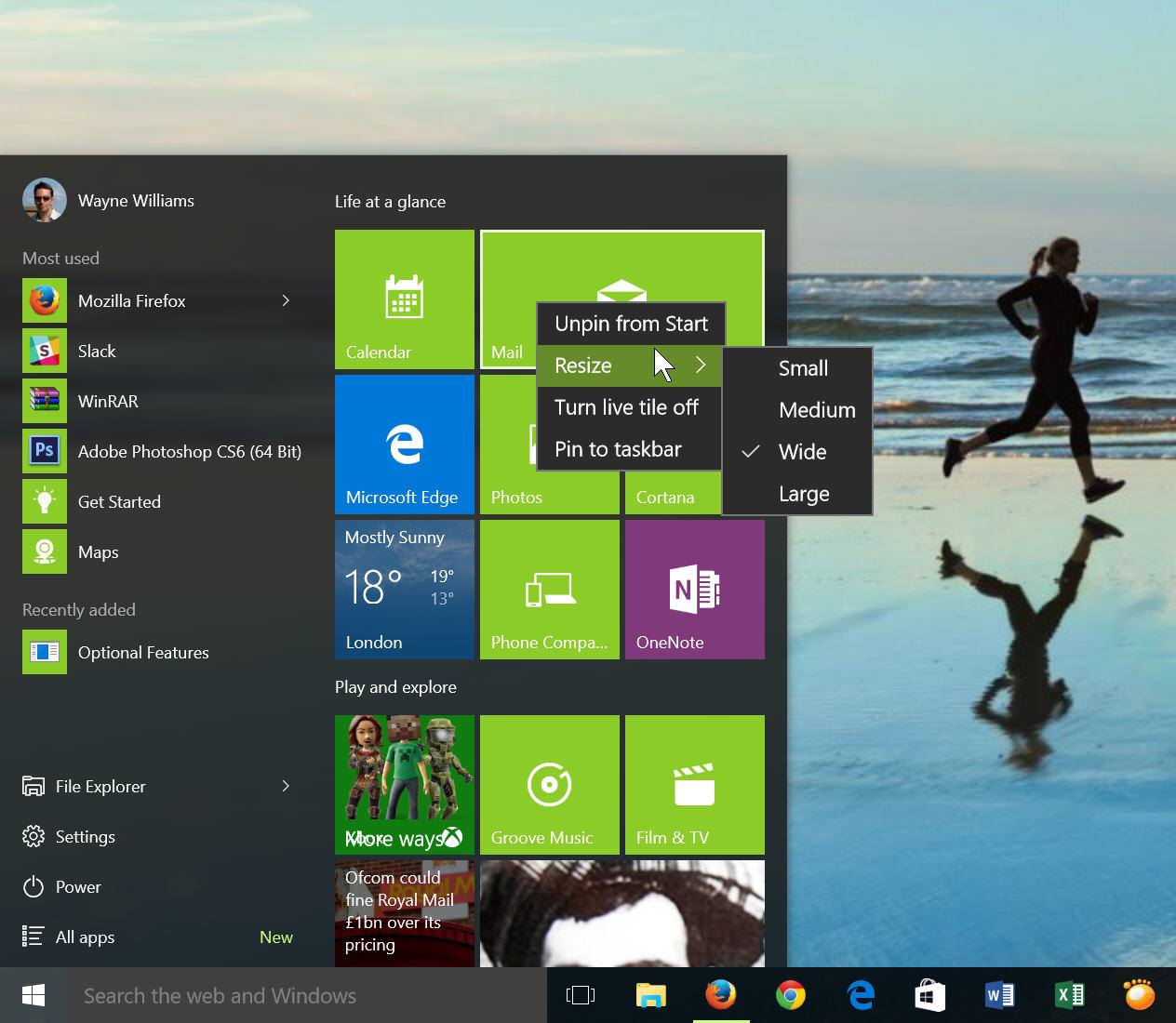
Hooray, Windows 10 has a Start menu. It may not be the Start menu you were hoping for (Windows 7 users I’m looking at you), but it’s there, and easily customized.
You can change the colors, transparency effect, and size and position of the tiles. If you don’t want the tiled interface you can turn this off, and just have a straightforward Windows 7-style menu. Here’s what you can do.
The Start menu can be resized by clicking and dragging on the edge of the menu. You can pull it upwards, or sideways. The tile groups reposition themselves automatically.
The tiles themselves can be resized via the right-click context menu. They can be small, medium, wide, or large, and you can turn live tiles on or off here too.
Unwanted tiles can be unpinned. Unpin them all, and you will end up with a very basic Start menu that takes up a fraction of the space. Should you wish to get the tiles back, go to All Apps, right-click each app you want and select 'Pin to Start'.
You can reorder tiles by clicking and dragging, and also sort them into groups. To change a group name, hover your mouse over it and then click.
You can customize the look and behavior of the Start menu by going to Settings, and clicking or tapping Personalization and selecting Start.
From here you can toggle the following options on or off:
- Show most apps
- Show recently added apps
- Use Start full screen
- Show recently opened items in Jump Lists on Start of the taskbar.
You can also choose which folders appear on Start.
Select Colors and you can enable or disable the auto color feature using the toggle next to 'Automatically pick an accent color from my background'. When this turned off, Windows will display a grid of colors you can use instead. Select one, and the thumbnail above will preview it. The color scheme will also be applied to Windows itself, so you can see the changes for real.

Scroll down, and you can choose whether or not to show this color on Start, the taskbar and action center. If you turn this option off, you’ll get the standard dark theme.
The Colors screen also lets you enable or disable the Start menu, taskbar and action center transparency effect.
All of the changes are actioned immediately, no need to click on an 'Apply' link or button to set them.
-

How to make Firefox or Chrome the default browser in Windows 10
Publié: juillet 29, 2015, 4:30pm CEST par Wayne Williams
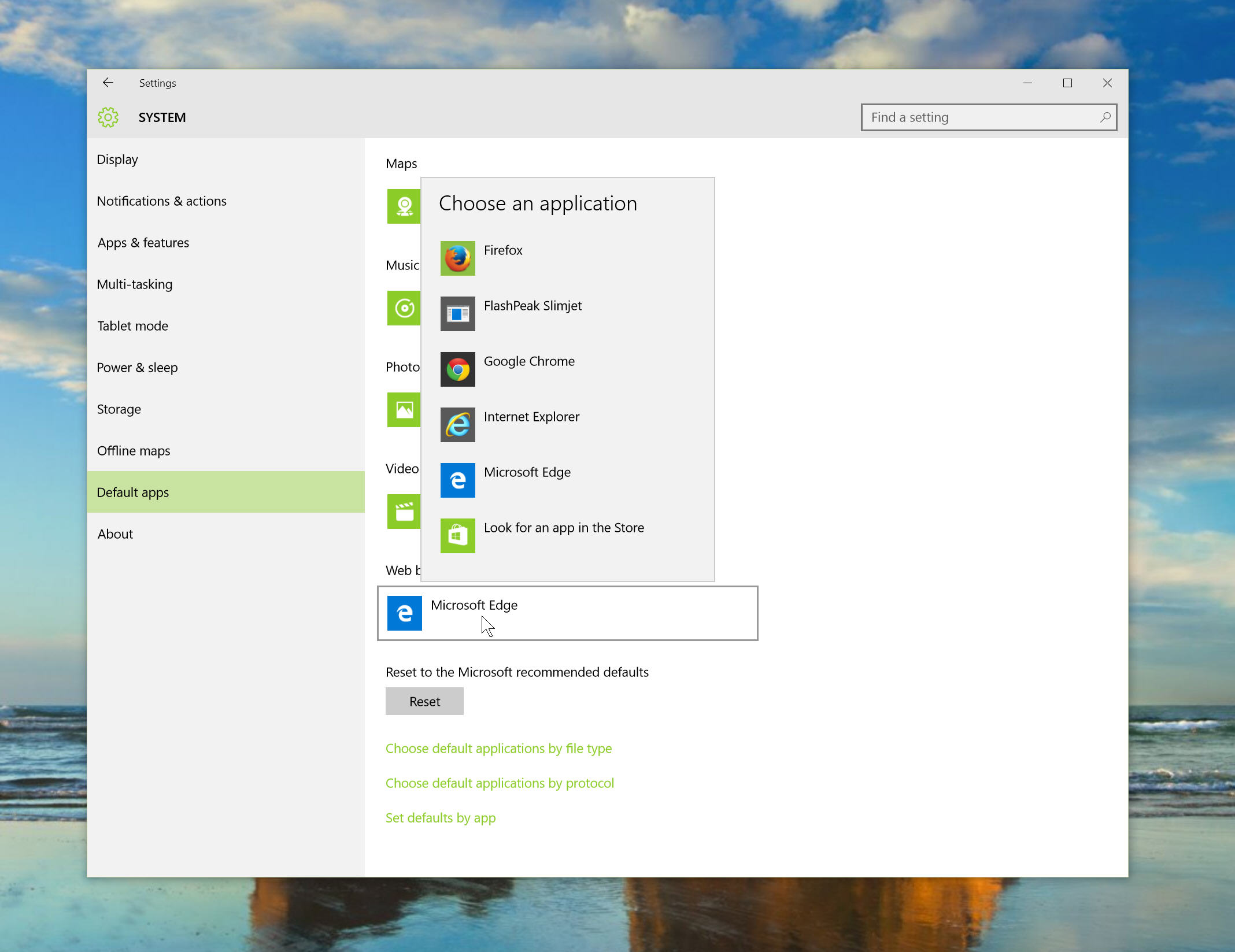
Obviously Microsoft’s Edge browser is the new default choice in Windows 10, and it’s definitely worth giving it a try. I’ve found it to be speedy and surprisingly good. Persevere long enough and you might grow to like it as I have.
That said, if you prefer to use Chrome or Firefox, with all the add-ons and customizations in place, I really couldn’t blame you. Edge isn’t (yet) as flexible, and if you already use Google or Mozilla’s browser for syncing content between devices, then it makes sense to use the same browser in Windows 10. Here’s how to setup a rival browser as the default option.
Firstly, when you install a different browser, you will likely be prompted to make it the default (you can set the browser to always perform this check when starting up). Do so and you’re good to go. The first time you run Firefox or Chrome on a recently updated Windows 10 system you'll probably be given the choice to make it your default.
This doesn’t always happen though, or you might accidentally skip past this step. Fortunately, there’s another, and possibly better way of setting the default browser.
Open the Start menu and type 'default app settings'. Hit enter.
Click on Web Browser (which will be Microsoft Edge by default) and select the browser you want to use instead.
You can also set the default browser through the Control Panel. Open the Start menu, type 'Default programs', hit enter and click 'Set your default programs' in the window that appears. Click your browser in the list on the left and then click 'Set this program default' on the right.
You can also choose which file types and protocols that browser opens by default.
-

How to change the default search engine in Microsoft Edge
Publié: juillet 29, 2015, 4:18pm CEST par Wayne Williams
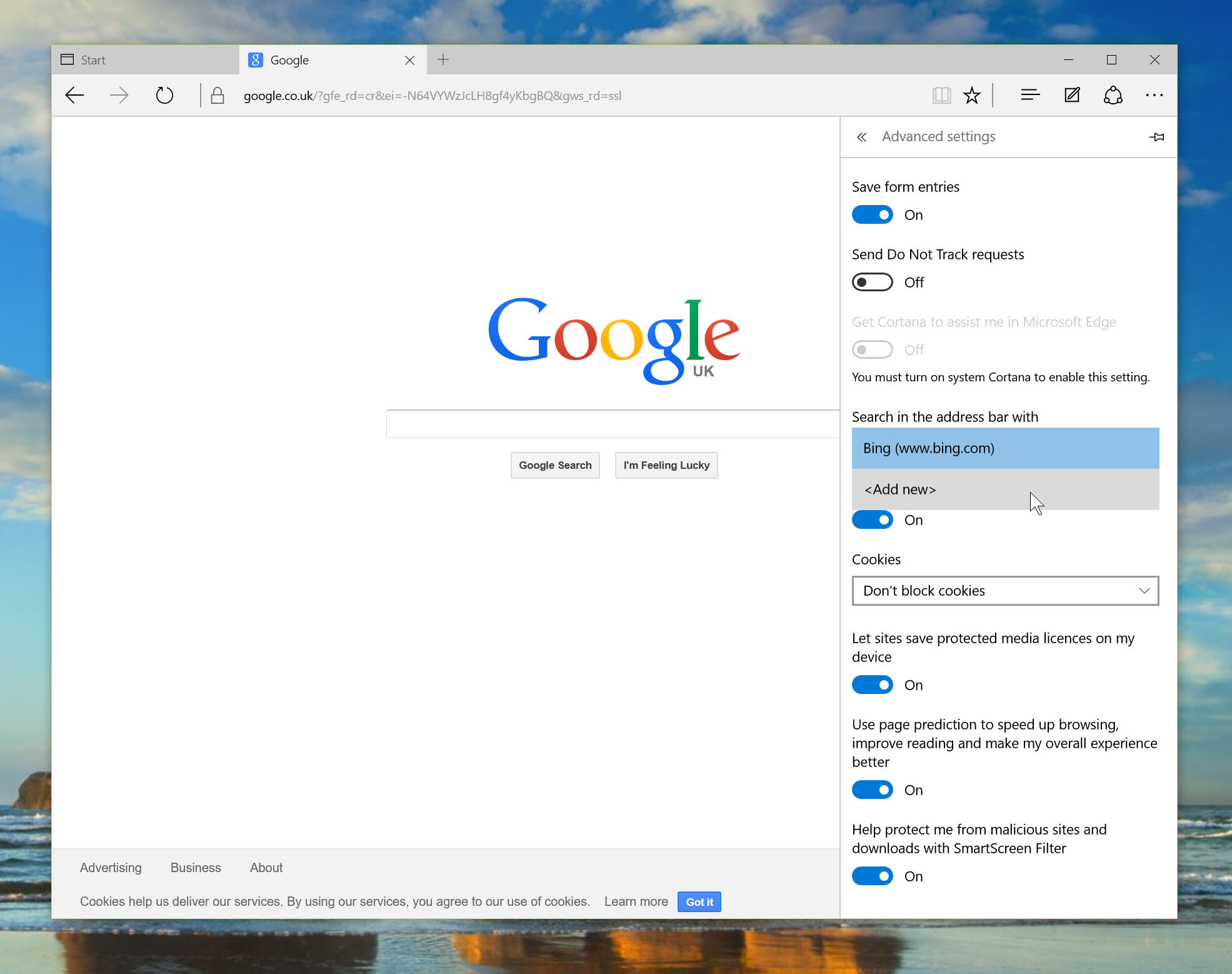
Microsoft’s new modern web browser comes with Bing as its default search engine. This will, of course, surprise absolutely no one. Some people will be more than happy with that choice, but others will prefer to switch to using something different. Like Google.
The process isn’t especially intuitive but it is very straightforward and won’t take more than a few seconds of your time. Here’s how to do it.
Go to the search site you want to set as the new default, like www.google.com, and click or tap the ellipses in the top right corner of the browser and select Settings.
Scroll down and select 'View advanced settings'.
Scroll down to 'Search in the address bar with', select 'Bing (www.bing.com)' and select 'Add new'.
Google should appear in the list of search engines. Select it and click/tap 'Add as default'.
That's it. Google will be the default search engine in Edge.
-

How to install Windows 10 on Oracle VirtualBox -- no Windows key required
Publié: juillet 29, 2015, 4:06pm CEST par Wayne Williams
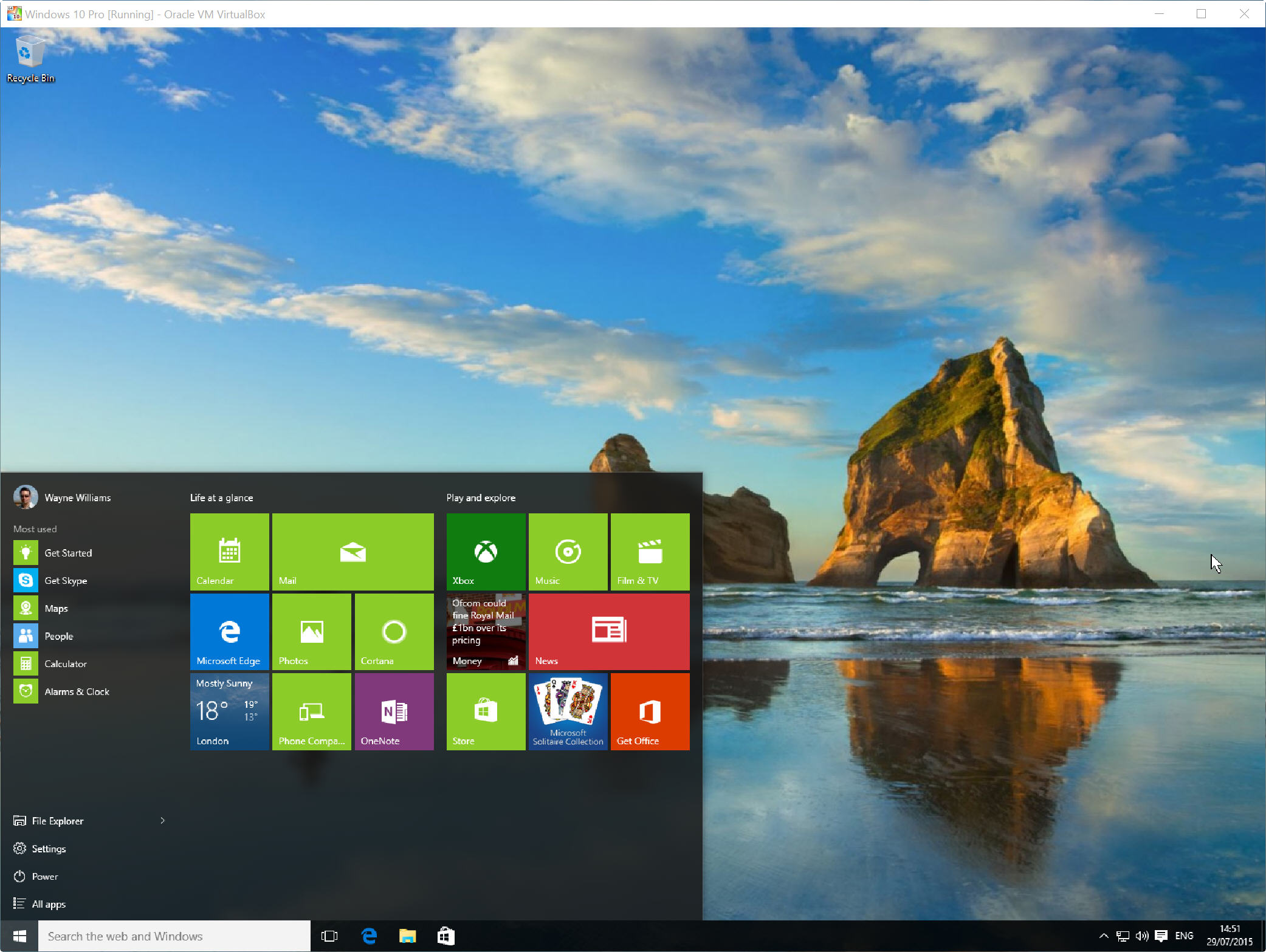
Now that Windows 10 is officially available, there’s a good chance you’ll be updating your existing PCs to the new OS. There are reasons for and against doing this of course.
If you’re not quite ready to jump aboard Windows 10, you might want to install it in a virtualized environment instead. This way you’ll be able to try it out -- no Windows key required -- without risking your current setup, and see whether you like it or not. It’s certainly worth playing around with.
The process is very simple -- all you need is a copy of Oracle VM VirtualBox and a Windows 10 ISO, which you can get by following the instructions here. There are x86 and x64 editions available in a choice of editions and languages.
To set up Windows 10 in VirtualBox, launch the software and click New in the Manager window. In the Create Virtual Machine dialog box enter 'Windows 10' as the name of the operating system.
Select Windows 10 as the version. (Choose 'Windows 10 (64bit)' if you have a 64-bit ISO).
Hit Next, then set the Memory Size. The recommended figure should be fine. On the following screen choose to 'Create a virtual hard drive now' and click Create. Accept VDI (VirtualBox Disk Image) as the hard drive file type. You’ll be asked if you want the new virtual hard drive to be dynamically altered (it will resize as required) or a fixed size. The latter option is faster, so select that.
Click Create and VirtualBox will begin building the drive.
When done, click the Start button in the Manager. In the 'Select start-up disk' window, click the folder icon and navigate to the Windows 10 ISO.
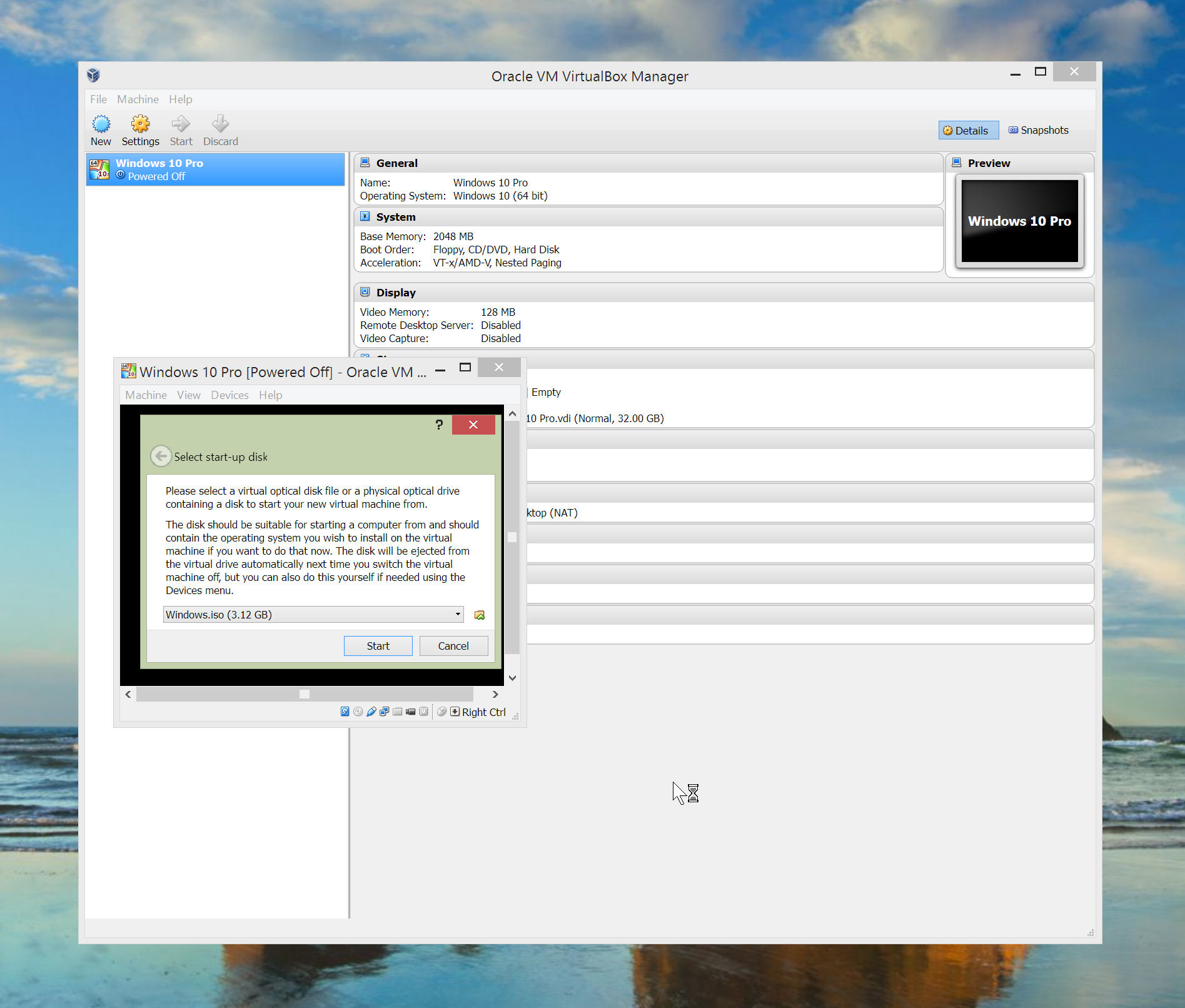
Click Start and Windows 10 should begin to load. Select your language settings, then click the 'Install now' button. Accept the license terms. Choose the 'Custom: Install Windows only (advanced)' option.
Click Next, and the installation process will begin. You'll be prompted to enter your license key but you can skip this step for now (useful if you don't actually have a Windows 10 key).
When it’s done, choose to 'Get going fast' using the express settings (you can customize things if you prefer). Say who owns your PC (you or an organization), and then sign in with your Microsoft account. You can create an account if you don’t already have one.
You’ll now have the option of creating a PIN to sign in with instead of a password. Microsoft says this is better, and it's unquestionably faster. If you don’t want to sign into your virtual version of Windows 10 every time, you can bypass this afterwards by following these steps.
Next you'll be able to add or skip Cortana, Microsoft's personal assistant. Once that's done, Windows 10 will finalize everything and you can begin exploring. One of the first things you'll probably want to do is resize the display settings in the virtual OS.
If you want to resize the program window, click View in VirtualBox and select Fullscreen or Scaled Mode (which is my preference).
The simplest way to shut down Windows 10 when you no longer need it is to click the X in top right corner of VirtualBox and select 'Power off the machine'.
Troubleshooting
If you’re running Hyper-V (Microsoft’s built in virtualization tool) in Windows 8.x you’ll need to disable it in order to be able to run VirtualBox.
If VirtualBox encounters errors and fails to install Windows 10, the first thing to do is make sure you’re running the very latest version of the virtualization software.
If that doesn’t fix the issue, go to System Properties on the host (not the virtual) PC, click the Advanced tab and click Settings under Performance. Select the Data Execution Prevention tab and change the setting from 'Turn on DEP for essential Windows programs and services only' to 'Turn on DEP for all programs and services except those I select'.
OK that, restart your system and this time Windows 10 should install just fine in VirtualBox.
-

How to manually trigger your reserved Windows 10 upgrade
Publié: juillet 29, 2015, 3:39pm CEST par Wayne Williams

If you reserved a Windows 10 upgrade, you were probably expecting it to appear this morning. For many people that was the case, but not for all. There are ways around this problem of course -- you can use the free tool Microsoft released today in order to update your PC whenever you like.
However, if you reserved the update, then you probably just want to get your upgrade through that. And rightly so. Fortunately, there’s a simple little trick you can use.
Firstly, there’s no guarantee that this will work. It should, but there are various reasons why it may not. Give it a try, and if it doesn’t work for you, then fire up the free tool and upgrade Windows that way.
All you have to do to force the upgrade is firstly make sure Windows Update is set to automatically download and apply updates, then open a Command Prompt window as an administrator.
In the box type wuauclt.exe/updatenow
Hit enter and that should trigger the Windows 10 download. As you may have read elsewhere, demand for Windows 10 is apparently causing slow downloads for users at the moment, so be patient.
Image Credit: Zurijeta / Shutterstock
-

Automate login and bypass the lock screen in Windows 10
Publié: juillet 29, 2015, 12:49pm CEST par Wayne Williams
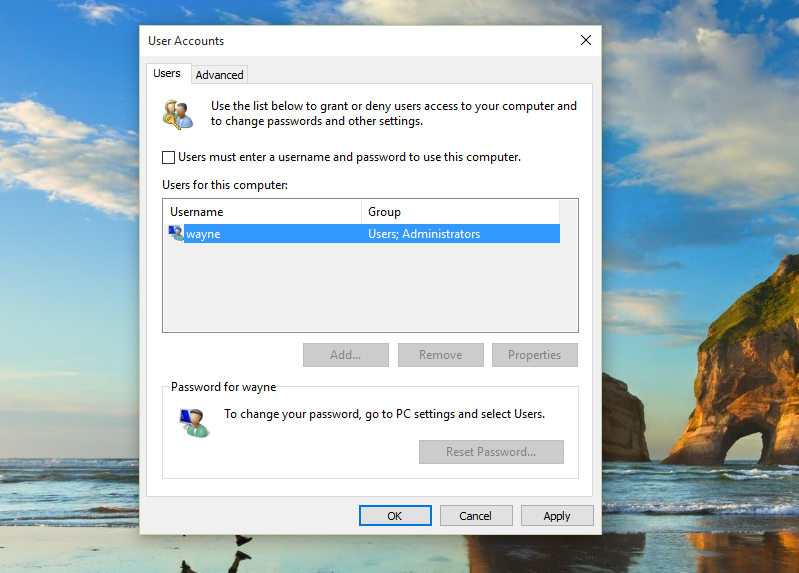
Like Windows 8.x, Windows 10 has been designed with security in mind and requires you to log in before you can start using it. That’s fine, and sensible, but if you’re the only person using your PC, and you’re confident that no one will be able to use it without your permission, or break in to your home and steal it, you might want to skip this stage.
The process of doing so is the same as in Windows 8, and is very simple without the need for registry hacks or complicated trickery.
From the Start menu type 'run'. Click on Run and type 'netplwiz'. OK that and highlight your account. Uncheck 'Users must enter a username and password to use this computer'. Click Apply. Then enter your password and confirm it. Click OK.
Restart your PC and when Windows loads it will automatically log you in. Easy.
If you change your mind and decide you do want the security offered by the password or new PIN feature, repeat the process and check the option forcing users to login.
-

How to download Windows 10 and create your own installation USB flash drive or DVD
Publié: juillet 29, 2015, 9:28am CEST par Wayne Williams
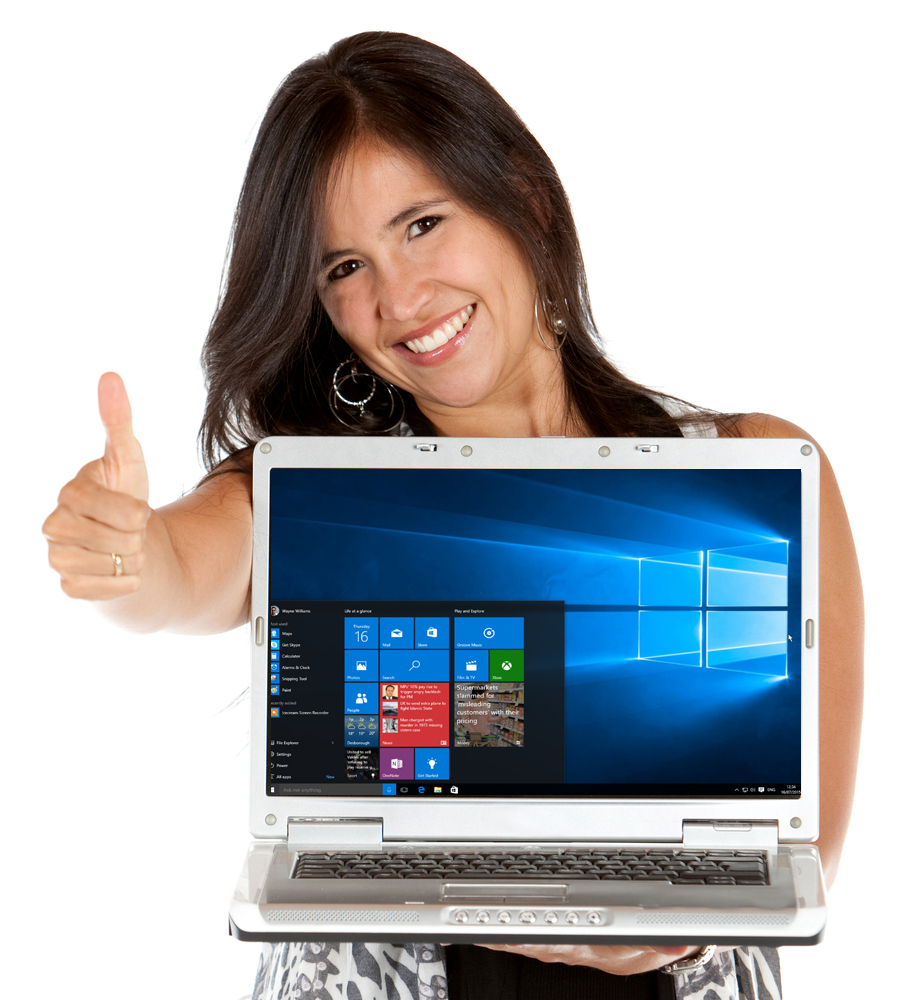
Windows 10 has launched in 190 countries, and if you reserved your copy you should be able to upgrade to it today, or soon afterwards. Microsoft will be notifying users in waves when their upgrade is ready to be installed.
However, for some people the wait may be long, and others have reported problems with the automatic installation. Fortunately, if you’re keen to get the upgrade started, Microsoft has released a tool that will let you download Windows 10 and create your own installation media on either a USB flash drive or DVD.
If you’re installing Windows 10 on a newly formatted PC, or one which has an older OS such as XP or Vista, you’ll need a valid Windows 7, 8.x or Windows 10 license to activate the operating system.
To get started, go here, and choose the download tool you need -- there are 32 and 64-bit versions available.
Save and run the file. You’ll be offered two choices. You can upgrade the PC you’re on to Windows 10, or create installation media for another PC. If you just want to start using Windows 10 select the former. To create an installer to use later, or elsewhere, select the latter.
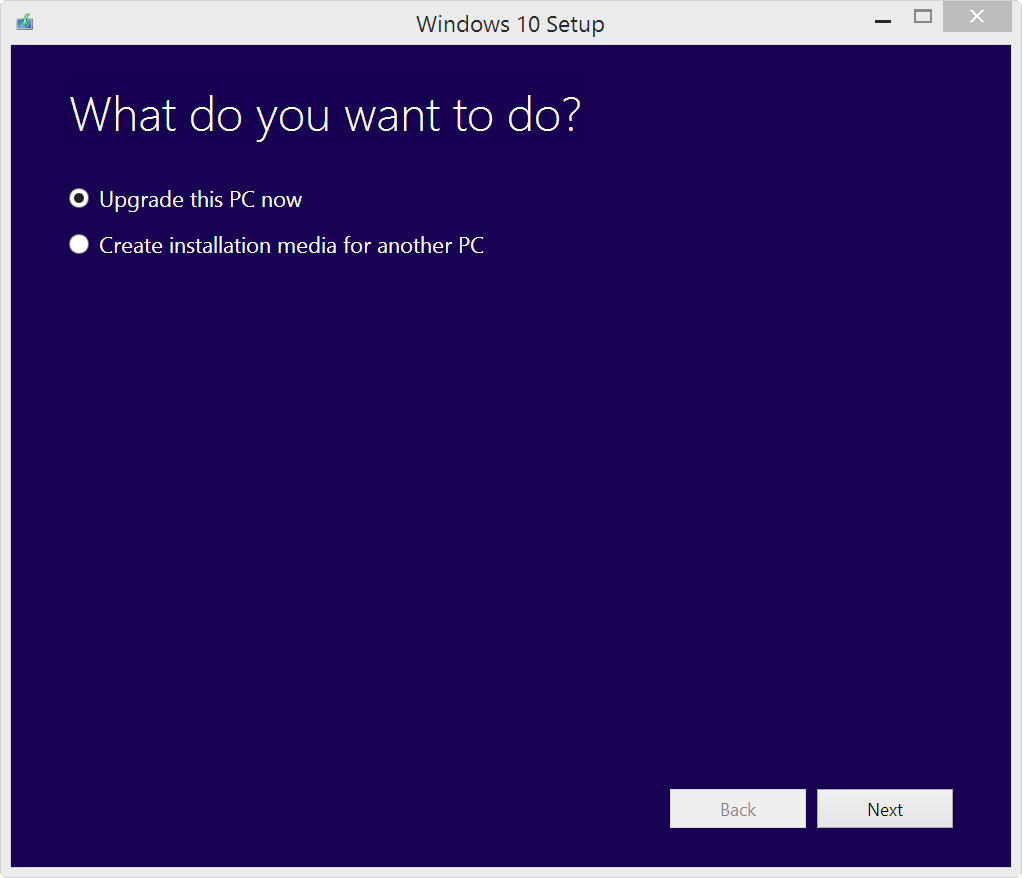
Click Next and select the language, edition (there are several variations of Home and Pro available), and architecture (32-bit, 64-bit, both).
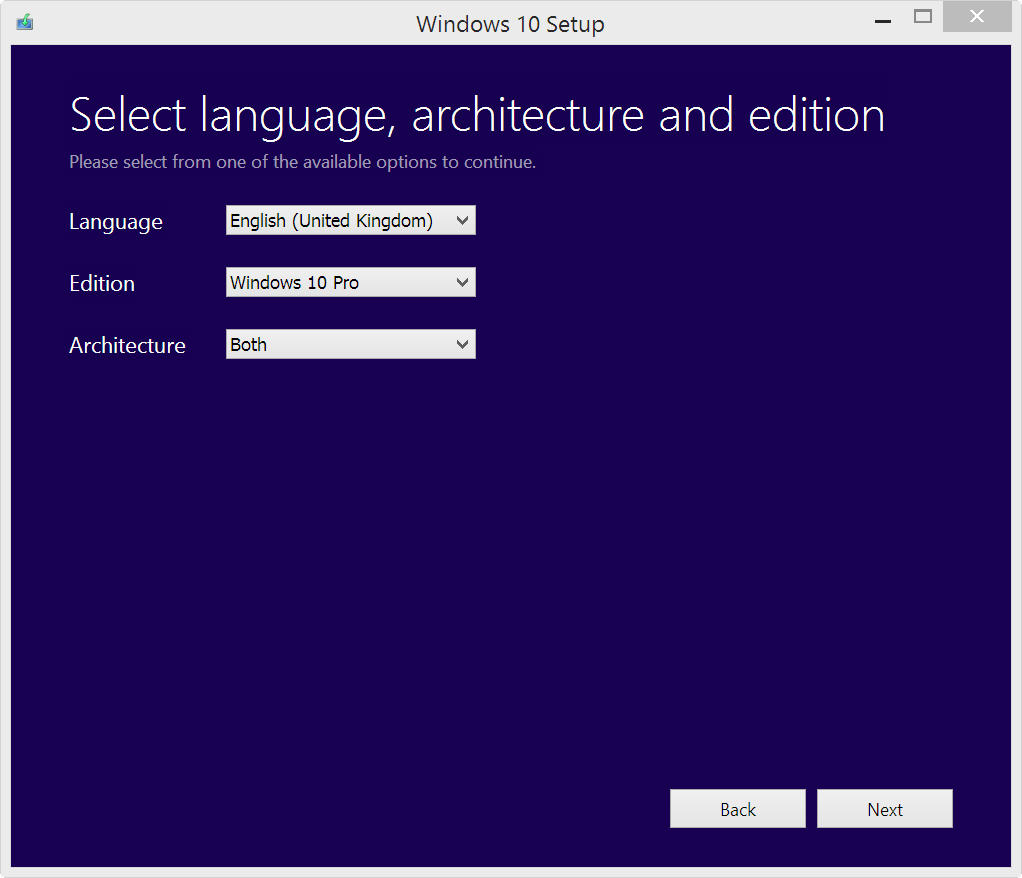
When choosing the edition, you’ll need to select the one that matches the Windows license you have. See the table below.

Click Next, and choose either USB flash drive or ISO file as your installation media. If you select the latter you’ll need to burn it to DVD later.
Click Next again, and it will download the file. This is several gigabytes, so will take a while to complete depending on the speed of your internet connection. Once it has finished you’ll be ready to upgrade an existing PC or install Windows 10 on a new system.
Image Credit: Andresr/Shutterstock
-

10 reasons to upgrade to Windows 10
Publié: juillet 27, 2015, 3:00pm CEST par Wayne Williams

Microsoft has been listing the top reasons why you should upgrade to Windows 10, with familiarity cited as one of the main selling points, Cortana’s inclusion is another.
Maybe it’s just me (but I expect it isn’t), but I don’t think those are really the best reasons why anyone should switch to the new OS. So I figured I would come up with a list of reasons that genuinely do make the case for upgrading to Windows 10.
It’s Free!
Well it’s free provided you have a valid Windows 7 or 8.x license and you upgrade in the first year. If you have an old OS, like XP or -- heaven forbid -- Windows Vista, then you’ll need to buy a license. Giving the OS away as an incentive to upgrade is a really smart move on Microsoft’s behalf and this, more than anything, will be the reason why the OS succeeds where Windows 8 failed (plus, it doesn’t suck).
You Can Try It Risk Free
Provided you’ve upgraded for free, you can try out the OS and if you decide you don’t like it, you can roll back to your old Windows version very easily. All you need to do is go to Settings, click the Update & Security and click Recovery in the left hand pane. Select the option to go back to your previous operating system. You only have 30 days to roll back, but that should be more than enough time to decide if you like Windows 10 or not.
The Start Menu
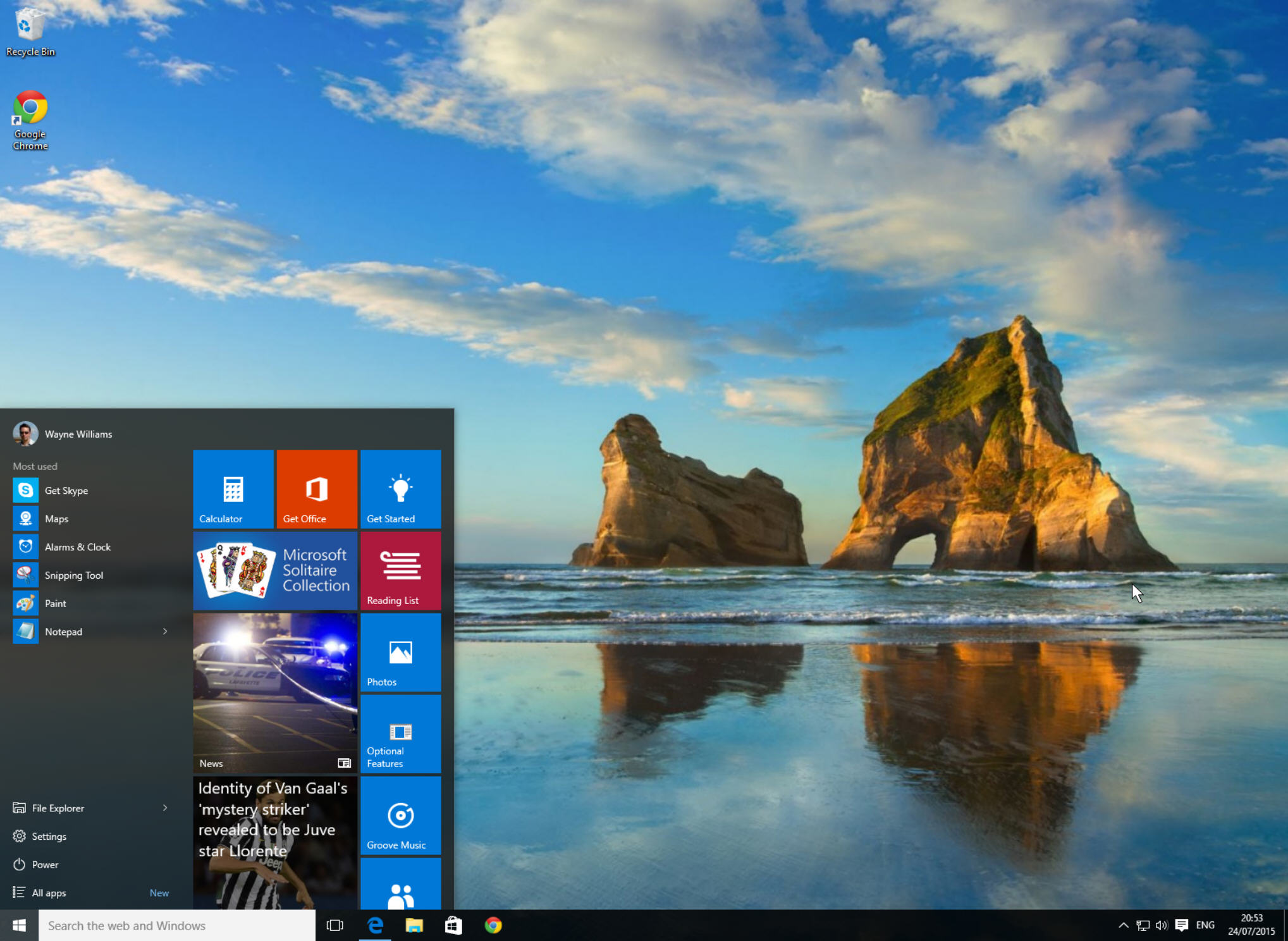
True, it’s probably not the Start menu that most Windows 7 users were hoping for, and Modern UI/Metro haters won’t be massive fans of it either, but it is a Start menu, and it works well. It is, for me, a great mix of Windows 7 and 8, and despite any misgivings you have, you’ll quickly get used to it. It's re-sizable and the live tiles are, I think, a great addition. Plus, if you really, really hate tiles, you can remove them and be left with a basic Start menu. So, win-win.
Integration with OneDrive
Microsoft’s cloud storage service is fully integrated with Windows 10. This means data is synchronized across devices, and you can choose what to include -- all files and folders, or just selected content.
Multiple Desktops
I have a three monitor set up for my desktop PC, which gives me the luxury of really spreading out (especially as two of the screens are 28 inch). When I switch to using a laptop, I find the transition jarring. It’s like working with just one eye open. Virtual desktops in Windows 10 help alleviate this and boost power user productivity. It’s the sort of feature that should have been included in Windows 7, but while it might be late to the party, at least it’s finally here.
Snapping
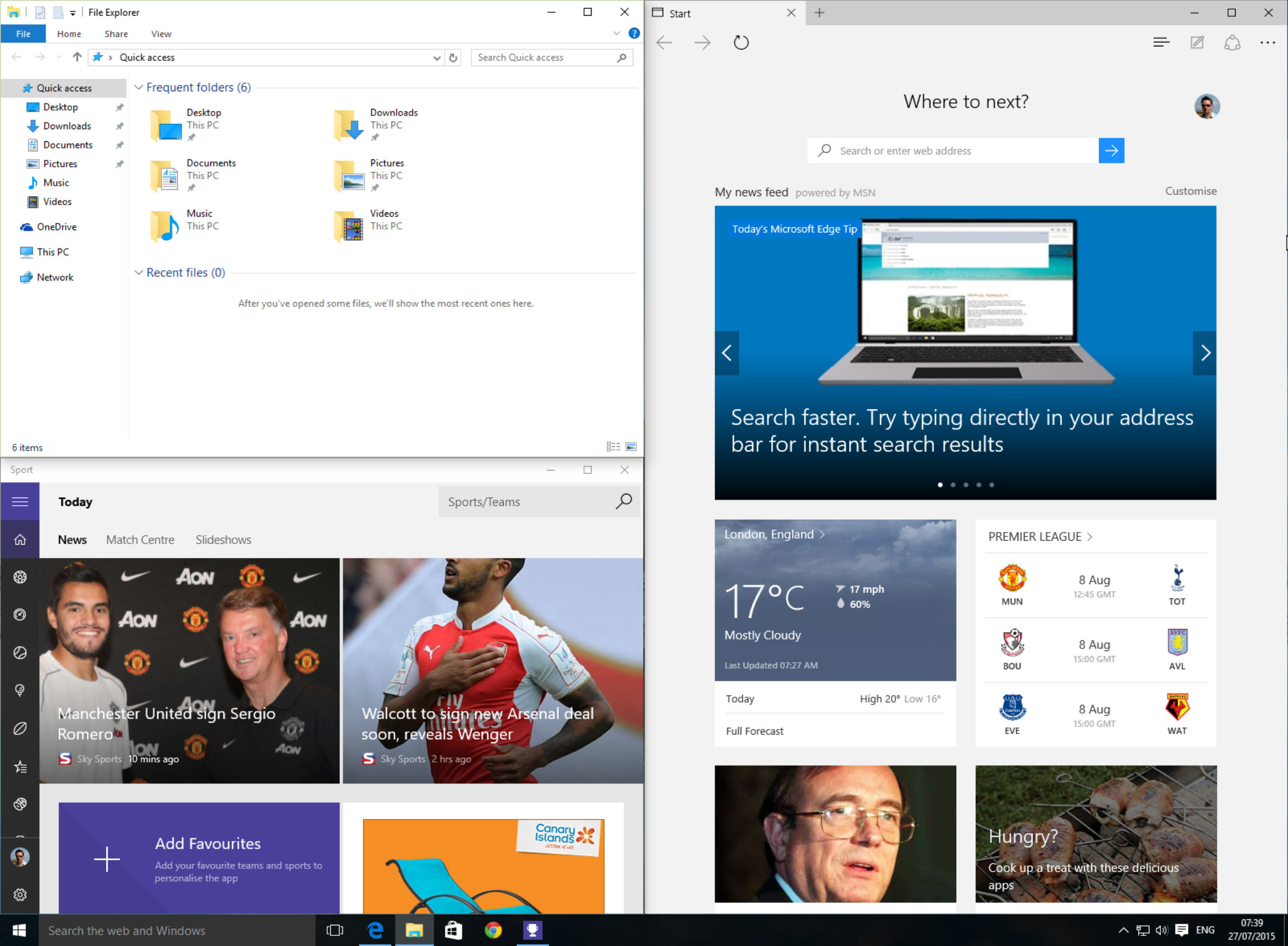
You can now have four windows snapped together on one screen, which is handy for those of us with big displays. Simply drag a window to the right or left hand edge and it will snap there. I'm a big fan of anything that can help productivity, and I've found this a useful inclusion.
The Action Center
A single notification area is long overdue, and in Windows 10 Microsoft corrects this oversight by providing a single place for all your notifications from Windows and installed apps. It also provides quick access to your choice of various settings.
Phone Companion
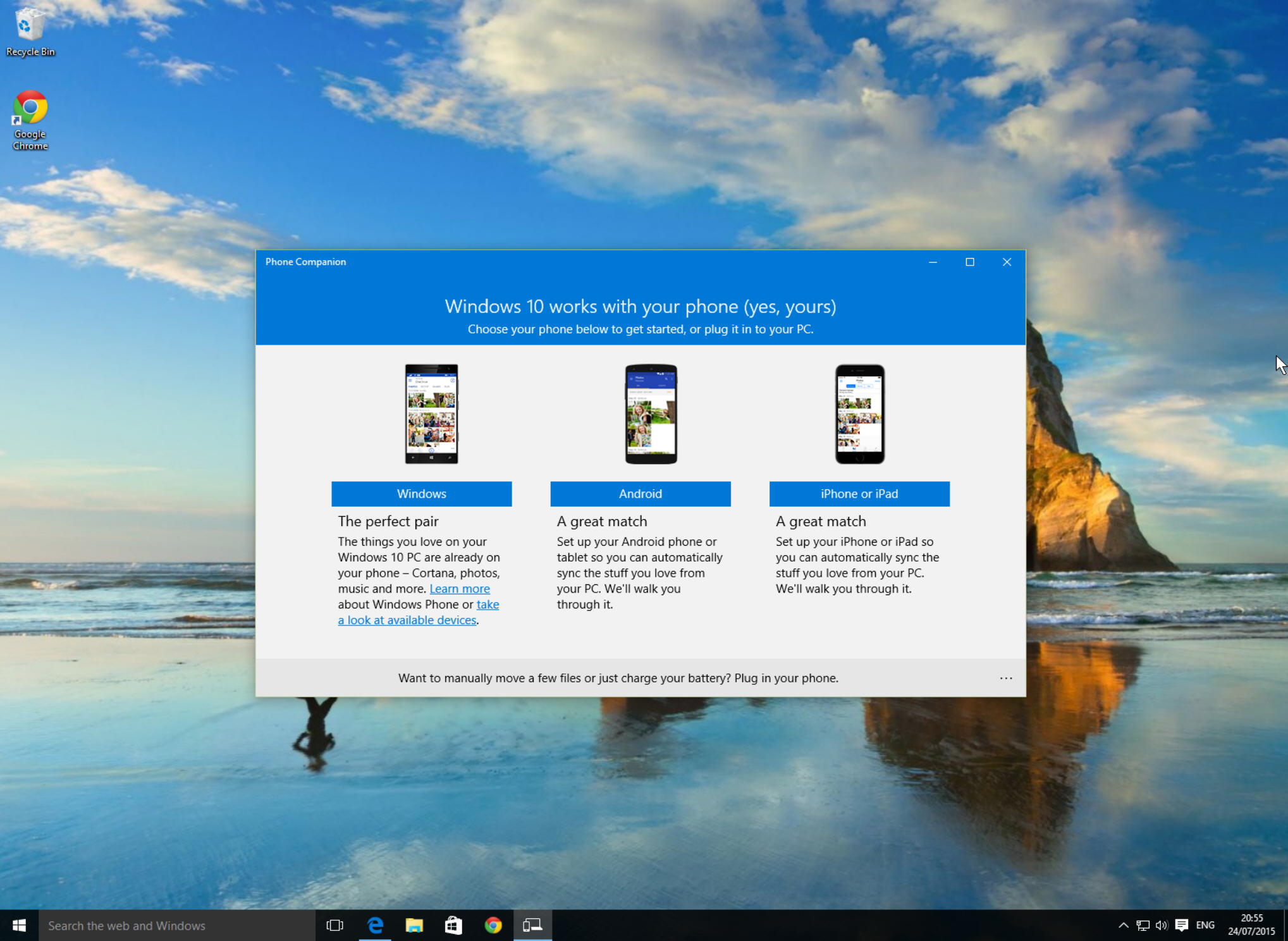
Windows 10 includes an app that will let you get your phone set up to work with your PC and any Microsoft services you use -- like Office, OneDrive, Cortana and Skype. You’ll be able to view photos taken with your Android or iOS device directly on your PC, listen to songs stored anywhere via OneDrive, access OneNote content, work in Office, and so on. All you have to do is install the relevant apps on the device(s) of your choosing.
Edge
Edge is a much, much better browser than Internet Explorer, and it’s impressively fast too. While a lot of people will prefer to stick with what they know best, Microsoft's new browser could be a quality alternative to the rather bloated and occasionally problematic Chrome and Firefox. Obviously, it's early days for the browser, and important elements are missing -- including add-on support -- but it could be really good.
A 21st Century Command Prompt
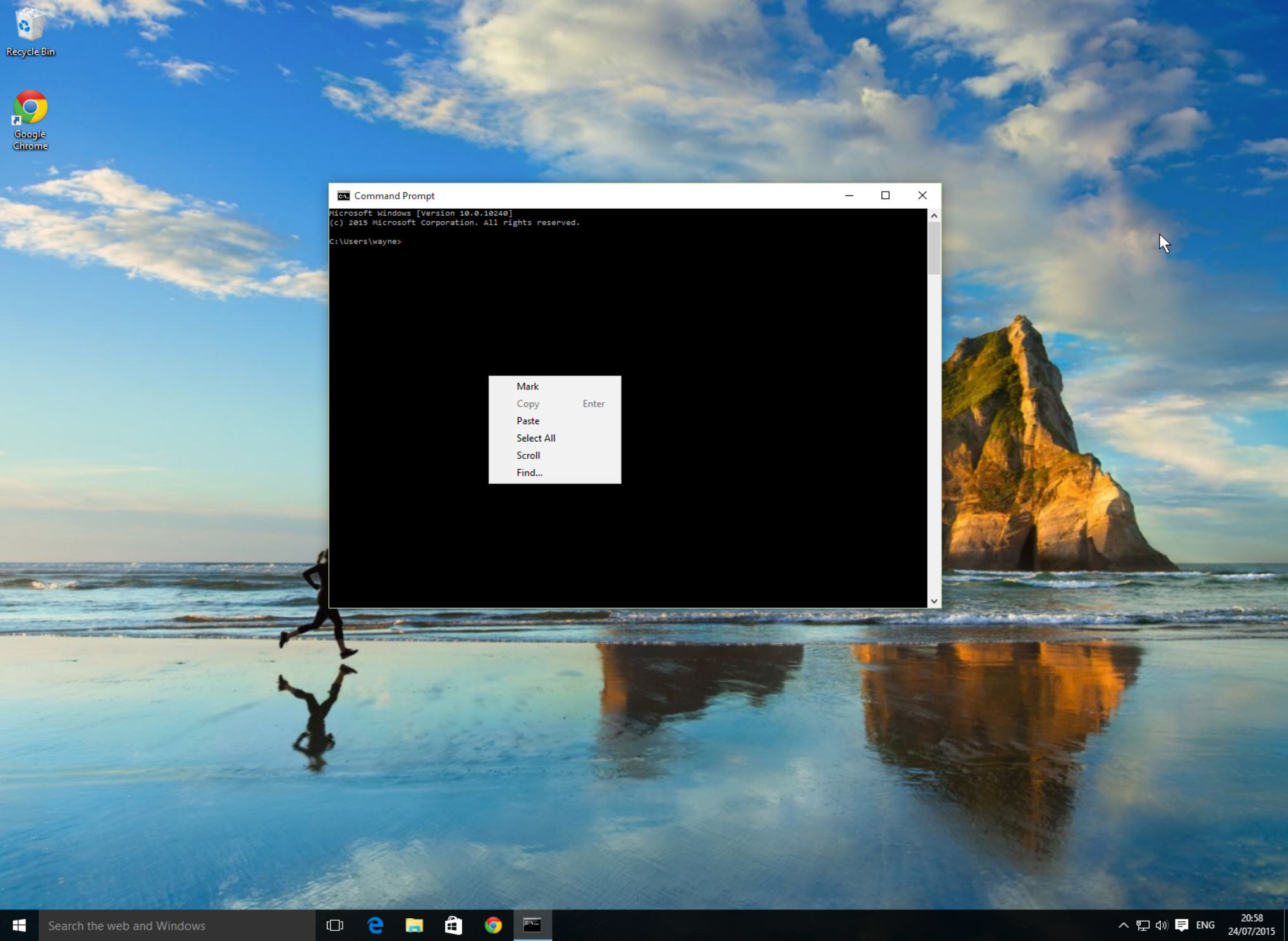
You’re probably so used to the look and functionality of the old command prompt, that the idea of a new and improved one doesn’t excite you much. But it should. You can now properly resize the command prompt window and use keyboard shortcuts to copy and paste content. It's long overdue, but a welcome inclusion.
Those are my top ten reasons for upgrading (there are plenty of others I could have included). What are your reasons for upgrading to Windows 10?
Photo Credit: Mr.Exen/Shutterstock
-

What you need to know before installing Windows 10 (including you might be waiting MONTHS for the upgrade!)
Publié: juillet 24, 2015, 3:05pm CEST par Wayne Williams
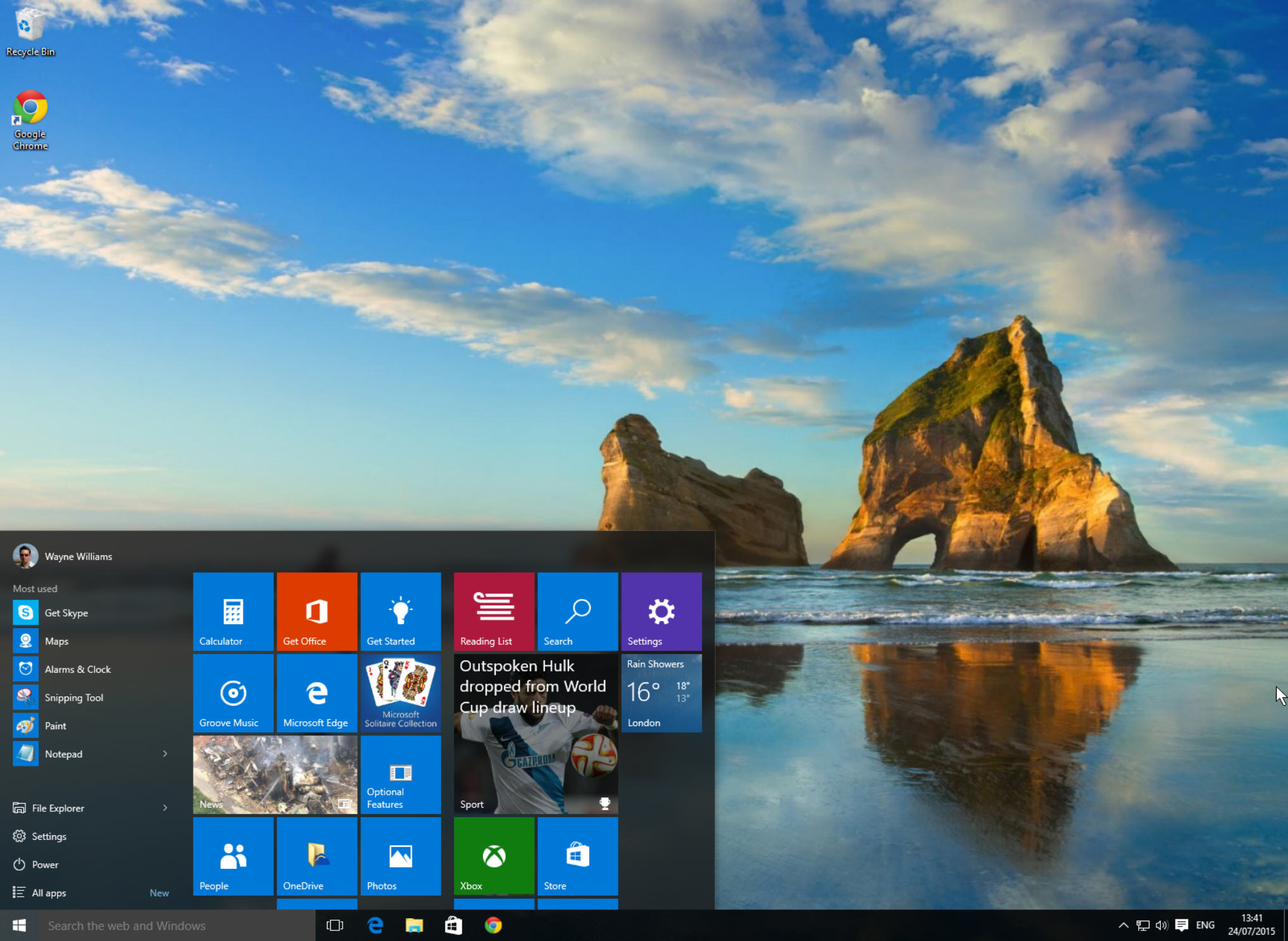
Microsoft has started sending out emails to Windows users who have reserved their copy of Windows 10 in advance of the launch next week. As reported previously, you probably won’t get your copy on the big day -- Microsoft says "After July 29, when Windows 10 is ready for your device, it will download in the background. You’ll then get a notification to schedule your upgrade right away or at another time that’s convenient for you".
Before you do install it, you’ll want to make sure your PC or tablet is ready for the upgrade.
Firstly, check your hardware meets or exceeds the minimum requirements. If it’s running another version of Windows then it should be fine as the requirements are quite low:
- Windows 7 Service Pack 1 (SP1) or Windows 8.1 (Update).
- 1GHz processor.
- 1GB memory for Windows 10 32-bit; 2GB for 64-bit.
- 16GB free hard disk space for Windows 10 32-bit; or 20GB for 64-bit.
- DirectX 9 (or later) compatible graphics card.
- 800 x 600 display resolution.
Naturally, the new OS won’t be compatible with all software or hardware you have. So be prepared for that eventuality. The Get Windows 10 app will scan for application compatibility in advance and alert you to any issues so there are no nasty surprises.
The installer will remove any incompatible anti-malware products and OEM applications during installation (you’ll be informed).
You will lose some previous Windows features in the upgrade including Windows Media Center, Windows 7 Desktop Gadgets, Solitaire, Minesweeper and Hearts games.
You should plan for the installation to take an hour to complete, although this will vary. If your target device has an SSD it will probably be a fraction of that -- Microsoft says around 20 minutes. On older devices it may take over an hour to complete. Of course, that’s after all the installation files have downloaded in the background.
The version of Windows you’ll receive will depend on the version of Windows you’re upgrading.
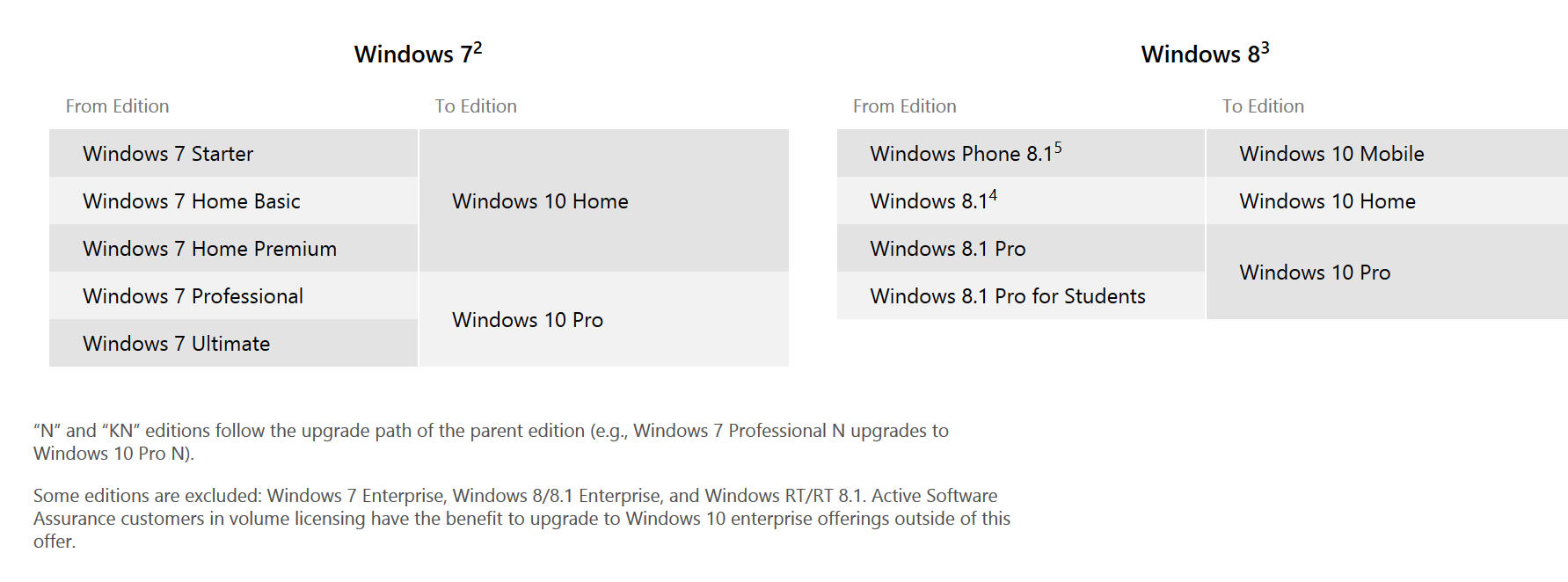
If you haven’t yet reserved your copy of Windows 10 it’s not too late to do so. Just open the Get Windows 10 app that should be shown in your system tray (Windows 7 and 8.x only). If the app isn’t there, follow the instructions here to get it. You can request an upgrade after July 29 -- the app will remain in your system tray, ready for you to make your decision.
The interesting thing is Microsoft says "Once Windows 10 is available, we’ll begin notifying devices that their free upgrade is available. Just open the Get Windows 10 app to schedule your upgrade. Note: Some notifications will go out as soon as Windows 10 is available; others may go out in the weeks or months following".
Months?
Microsoft is hedging its bets of course, but that’s an intriguing caveat. It will be interesting to see how smoothly the roll out goes next week.
Have you reserved your copy of Windows 10?
-

Which US airports offer the best mobile data coverage?
Publié: juillet 23, 2015, 9:56am CEST par Wayne Williams

With hundreds of millions of passengers passing through US airports every year, mobile networks often struggle to keep up with demand, which can result in poor and unreliable data performance.
Twice a year, RootMetrics tests mobile coverage at the 50 busiest airports in the US, using off-the-shelf smartphones to measure performance at all the places where passengers are most likely to use their phones. The latest US Airport Network Performance Review, which covers the first half of 2015, features some surprising results, including one of the busiest US airports ranking at the top and another major US airport landing near the very bottom.
The best performing networks at each airport are given a RootScore Award, and Verizon was the clear winner, earning 29 awards for excellent reliability and speed. Big Red recorded the fastest airport median download and upload speeds with a blazing-fast 68.8 Mbps download and 40.4 Mbps upload at Chicago’s Midway International Airport. Reliability was near perfect too as RootMetrics connected to the network more than 97 percent of the time at 49 of the 50 airports tested; and maintained that connection in web/app testing at least 97 percent of the time at 46 of the 50 airports.
T-Mobile came in second place with 20 awards, followed by AT&T on 13 awards. Sprint was more reliable than in previous tests, but failed to win any awards.
In addition to measuring download and upload speeds, the company performs common tasks such as checking emails, web browsing and app usage.
As to the best airports, the top five were:
- Hartsfield-Jackson International Airport (45,308,407 annual passengers)
- Cleveland-Hopkins International (4,375,448 annual passengers)
- Southwest Florida International (3,788,870 annual passengers)
- San Jose International Airport (4,315,839 annual passengers)
- Dallas Love Field (4,023,779 annual passengers)
Sadly for travelers in California, Los Angeles International finished in 48th, with data speeds notably slower across all carriers than at the top-ranked Hartsfield-Jackson. According to RootMetrics, a 45-minute HD video would take less than two minutes to download on T-Mobile at ATL, while that same video would take more than 13 hours to download on T-Mobile at LAX.
Photo Credit: michaeljung/Shutterstock
-

Windows 10 Mobile Insider Preview Build 10166 finally arrives on the Slow ring
Publié: juillet 23, 2015, 8:55am CEST par Wayne Williams

It’s taken two weeks to get there, but finally Microsoft has deemed the latest build of Windows 10 Mobile stable enough for Slow ring Insiders.
While the mobile version of the OS isn’t likely to launch until the fall, Microsoft is now mostly working on improving stability and squashing bugs along with some small changes and feature tweaks.
The majority of the known issues listed in Build 10149 have been addressed in this new release. Microsoft has also fixed the problem with the missing post-upgrade migration status screen. To anyone updating to Build 10149 it looked as if the process had frozen, when it fact it hadn’t. Another bug that has been resolved in the new build is the problem some Insiders encountered whereby they were unable to unlock their phones despite entering the correct PIN.
Problems with incorrect app colors have been resolved and the reliability of app downloads and updates from the Store have also been improved.
The tiny battery icon has been enlarged as well.
Microsoft suggests that once you’ve updated to the new build you go to the Store and grab the latest app updates, as there have been lots of improvements made to those in recent weeks.
-

You'll be able to try Windows 10 for free without a product key
Publié: juillet 22, 2015, 7:15pm CEST par Wayne Williams

Once Microsoft’s new OS launches on July 29 you’ll be able to upgrade an existing Windows 7 or 8.x install through Windows Update. If you haven’t reserved the OS yet, and the Get Windows 10 app isn’t showing in the system tray, follow the instructions here.
But what if you want to install the OS from scratch, or have an older version of Windows, such as XP? Although Microsoft hasn’t confirmed it as such, it’s expected the software giant will be releasing ISO files of Windows 10 for this very purpose, and the good news is it looks like you won’t need a product key to install and try out the OS.
According to leaked Windows 10 release notes posted on Twitter by Russian leaker WZor, you’ll be able to install and boot into the OS without immediately needing a product key. Windows won’t be activated, obviously, but functionality won’t be impaired while you test out the OS. By the sound of things, it will be similar to how you can install and try Windows 7 without a key. You will, of course, eventually need a valid license to activate and use the OS long term.
The release notes refer to "partners", but essentially it means anyone installing Windows 10.
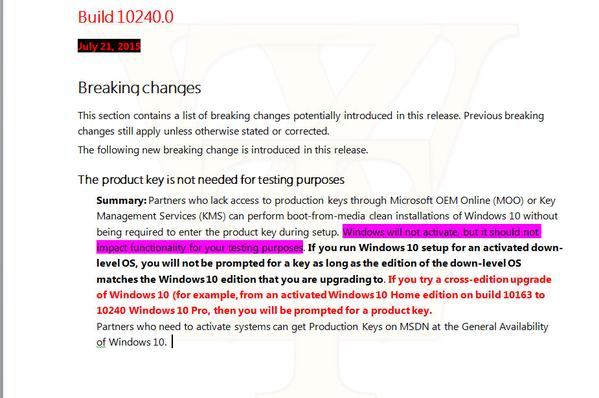
If you’re installing the OS on a PC that has Windows 7 or 8.x on it, Windows 10 will be activated automatically, providing you’re installing a like-for-like version. In other words, if you have Windows 7 Home Premium installed, you’ll be able to upgrade to Windows 10 Home, but not Windows 10 Pro. Check out the comparison table below.

Image Credit: Zurijeta / Shutterstock
-

Microsoft's new Send app makes emailing as easy as texting
Publié: juillet 22, 2015, 4:03pm CEST par Wayne Williams

Despite being able to communicate with friends, family, and co-workers in myriad different ways, email remains incredibly popular. However, if you just want to send a quick message, ask a question, or fire off a reply, it’s often not as speedy or convenient as text messaging.
Send, from Microsoft Garage, is a new app that makes sending quick emails as easy as texting, without the need for a subject line, greeting, or signature.
It’s currently for people with Office 365 business and school email accounts, although Microsoft plans to open it up more broadly in the coming months. It will allow you to message any of your co-workers, and uses the Office 365 connection to keep communications synced with Outlook for referencing later.
"Imagine you’re walking into a big presentation and someone asks you to find out if your colleague will be attending. Chances are, you don’t have your colleague’s phone number, but you will probably have their email address -- especially if you’ve been emailing with them recently. You don’t have time to search your inbox, start a new thread, or even type out a subject line. You just want to ask that person, 'Will you be at the presentation?'" the Outlook team says. This is where Send comes in. Just tap a contact’s name to ask the question.
There are quick replies built in, to save you even having to type a reply if someone sends a message to you.
Cleverly, the app doesn’t show all of your emails, only those sent/received through Send, so you don’t have to wade through tons of junk to find a particular message.
Send is available now for iPhone in the US and Canada, and is coming soon to Android and Windows Phone.
-

Anonymous destroying Islamic State propaganda with images of Anime girls
Publié: juillet 21, 2015, 7:21pm CEST par Wayne Williams

It’s fair to say Anonymous is no fan of Islamic State. The hacktivist collective has been waging an online war against the terrorist organization for a while now as part of #OpISIS. Five months ago it described Islamic State as a virus, and itself as the cure.
Now Anonymous has a new weapon which it’s using to reduce the impact of Islamic State’s presence on Twitter -- female Japanese Anime characters.
Anonymous has published a list of Twitter accounts on Pastebin that it says are sympathetic to Islamic State, and many of those have been flooded with images of Anime characters in a bid to alter how IS results appear on search engines.
Anonymous says it has taken action against more than 750 Twitter accounts, including some that had in excess of 10,000 followers. The hacktivists have also asked users to report accounts that support IS to Twitter for "being abusive or harmful", "engaging in harassment", and "threatening violence or physical harm". This is done through the standard Twitter Report feature.
Twitter isn’t the only battleground though. Anonymous has also been targeting Facebook groups, websites and IS sympathizer email addresses in an effort to disrupt communications.
-

This War of Mine: A grueling, depressing iPad game you really need to play
Publié: juillet 21, 2015, 2:36pm CEST par Wayne Williams
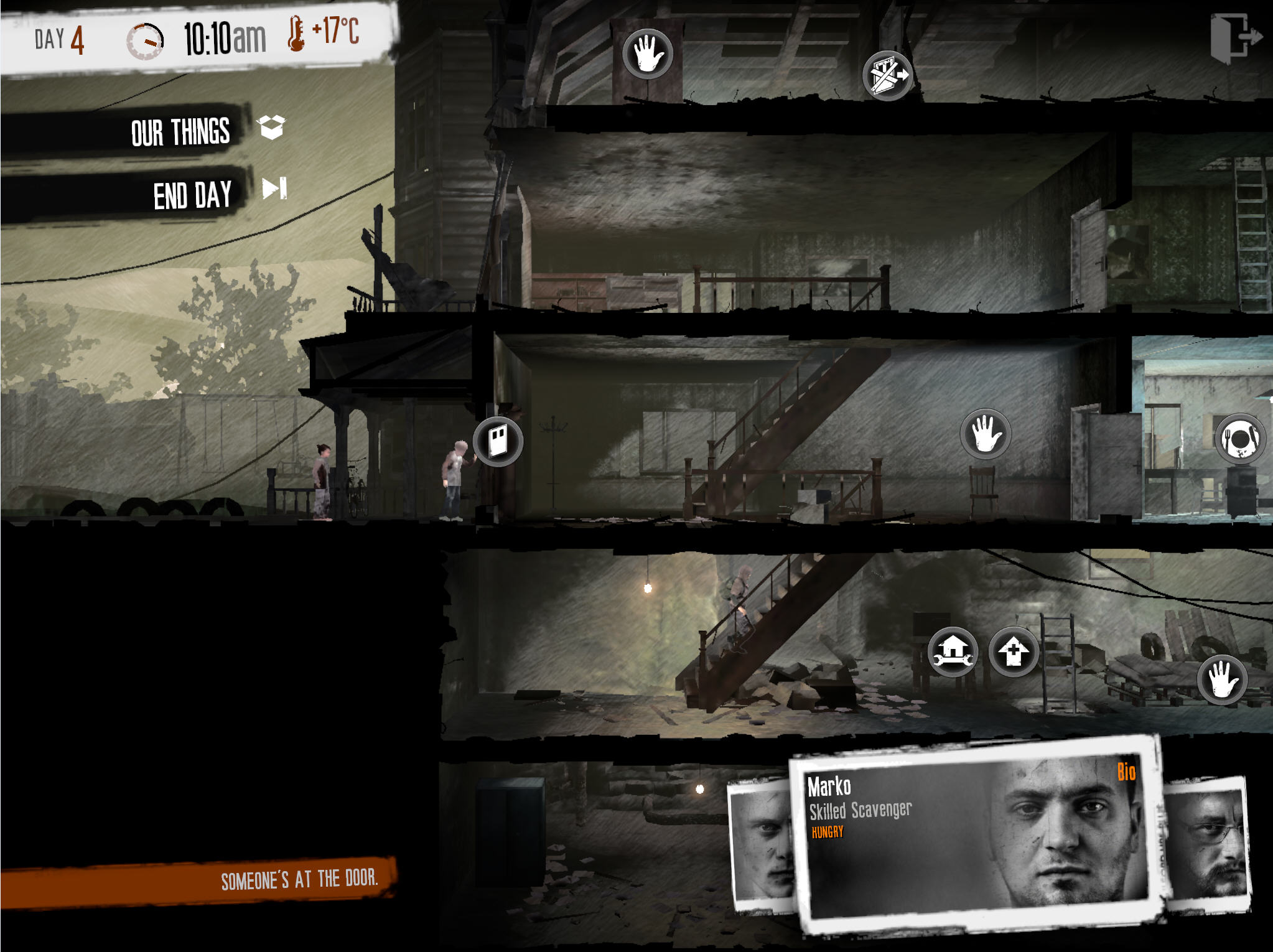
You know what to expect when it comes to war games, right? Lots of shooting, action, and bravery. This War of Mine isn’t like that. At all.
For starters, you don’t play as a soldier, or a band of fighters. Instead you’re in charge of a small group of ordinary Eastern Europeans trapped in a war zone, just trying to survive on a day-to-day basis by whatever means possible. This includes scavenging, bartering, and stealing. While there are moments of positivity, the chief feelings you’ll experience as you play the game are hopelessness and despair. But that’s what makes it so great. This War of Mine stays with you long after you’ve turned off the iPad.
When you start the game for the first time you find yourself in charge of the lives of three people -- Marko, Pavle, and Bruno -- who are holed up in a crumbling old building. Much of the space is inaccessible, due to piles of rubble and locked and broken doors. Unlike the tooled-up battle hardened heroes you’d normally control in war games, these three are just regular guys who are injured, sick, tired, and completely ill equipped to handle the war raging around them.
You can switch between the characters, and gameplay involves tapping on the icons around the building to search for items that might help improve the team’s lot -- food, medicine, bandages, wood, electrical items and so on. Get together enough of the right items, and you can build objects like beds, or chairs. Digging away rubble and repairing or unlocking doors opens up additional spaces to explore. The problem is, you never find much, and the fragile state of the people you’re controlling means they can’t work as hard as you’d wish.
Each person has a defining ability -- Bruno is a good cook (before the war he was a restaurant owner and TV chef), Pavle is a fast runner (who used to be a soccer star), and Marko is a skilled scavenger (who worked as a firefighter). Taking into account their skills might help keep the group alive, although you’ll have to use each person for lots of different tasks.
Night falling brings new challenges as you have to decide what each person will do. If they’re sick, or tired, sleeping might be the best action. But you’ll probably want to set a guard too, as you’re not alone in the war-zone and there’s the very real chance someone will break into your building and take the resources you’ve spent all day gathering. You’ll also want to send someone off scavenging.
There are various buildings nearby -- hospitals, schools, construction sites, cottages and the like -- and you can choose one to explore and scavenge. As the game progresses more destinations appear, although some existing ones will become inaccessible due to fighting, and it’s important to select your target for the night mission wisely. A description will tell you what sort of items are to be found there, and give you an idea of the type of people you’ll encounter. Some survivors will barter with you, others will defend their properties, while quite a few will shoot first and ask questions later.
It’s during the scavenging that you encounter the real drama. The first time I played through, I found myself stealing from an elderly couple. To me, I was just collecting resources in a game for some ill and hungry characters I was charged with keeping alive. But to the old man who watched me root through his person possessions, I was an utterly despicable human being, an example of how war can bring out of the worst in some people. "Please don’t take our things!" he pleaded repeatedly, as he followed me around. He had next to nothing, and I was taking it all from him, including his frail wife’s medicine. I felt bad, but it didn’t stop me.
On another night, quite far into the game, Bruno was shot and killed while rooting through a pile of rubbish. He’d found some wood and tobacco. To lose someone you’ve gotten to know, and even care about, so suddenly -- and for something so trivial -- was shocking. The impact on the survivors back at the crumbling building that was our home was even worse, sending them further into despair. There’s no saving the game before you do something potentially risky and then reloading it if things go wrong. If things go wrong in the game, they stay wrong forever.
Continuing to steal from other survivors, which was my main tactic in the first play through, had an impact on my group's morale too, leaving them to question their/my choices and wonder if, surely, there wasn’t a better way to survive.
There is, of course. You don’t just have steal from others. You can grow food, set traps for animals (rats!), filter rainwater, brew alcohol, roll cigarettes, and barter things you find or make for items you need. You can upgrade your workshop to create more advanced items, and then upgrade some of the items, like the stove for example.
This involves collecting all the right items you need for the upgrade, and then all the right items you need to produce the objects. You’ll often send a scavenger out to try and find something you desperately need only for them to come back tired, possibly injured, and missing the vital supplies.
There’s lots of grinding here but, unlike other games, there’s thankfully no option to make life easier with an in-app purchase. Something like that really would have cheapened the experience.
Having learned some big lessons in my first play through I stole much less the second time around, and treated people how I wanted my group to be treated, and things were much more positive as a result.
You can, with perseverance, do well, but your worldly goods -- such as they are -- can be taken away in a single night when raiders come in and help themselves. At night you follow the character who is scavenging and you only discovered what happened back at base when he (or she) returns there.
Fortunately, you can patch up the building to make it less vulnerable to attacks, and tool up whoever you have guarding the place to reduce your losses.
Life can be made more bearable by adding entertainment, cigarettes and alcohol to the lives of the group, but you have to decide if you want to cheer up a depressed survivor with a drink, or trade the alcohol for food. And how useful will a drunk be if raiders arrive in the night?
Occasionally people will come to your door, and you can choose whether to help them or not. There are lots of moral choices to be made in TWoM and you have to weigh up helping where possible with what’s best for the group. Bringing in another person will mean another pair of hands to build items, defend the building, and scavenge, but they’ll also be another mouth to feed, and food is scarce. But if you don't provide them with somewhere to stay, will they die? It's a very real possibility.
There’s plenty of variety in the game, with loads of different places to visit at night. When all of your characters die, or the hopelessness is too much for you to continue, you can quit and restart. This will give you a choice of groups to care for, each with their own characters and stories, so you can experience surviving the war from a different angle.
I play a lot of games on iOS. Many are fun, some are involving, but few are as vital as This War of Mine. It’s beautifully presented with pencil drawn graphics, and a mournful tune that plays over the sounds of gunfire and falling bombs. The game can, at times, get a little tedious, but then so can real life. It makes the moments of drama all the more thrilling, and all the more affecting.
This War of Mine haunts you, and makes you consider of the plight of people in real war zones in a way that you might otherwise not do. At $9.99 it’s one of the more expensive games you’ll find on iOS, but it’s well worth it.
You can buy it here.
-

Microsoft confirms it will support Windows 10 for at least ten years -- for free! But questions remain
Publié: juillet 17, 2015, 8:10pm CEST par Wayne Williams

Microsoft has made a real mess out of explaining its plans for Windows 10 to the masses. I talked about the company’s inability to stop confusing the hell out of Windows 10 users three weeks ago. While the company has slowly been clearing up much of the fear, uncertainty and doubt surrounding its new OS, one big question remained. Just how long would the company be offering free updates for?
"The lifetime of the device" said Microsoft. Which, frankly, meant nothing to anyone. A PowerPoint presentation buried on Microsoft's site suggested that Window 10 users would get free upgrades only in the first 2 to 4 years. Which is hardly any time at all. Thankfully, that turns out not have been true, as today -- at long last -- Microsoft has updated its Windows lifecycle fact sheet.
According to the new information, Mainstream support starts on July 29 2015 (launch day) and runs until October 13 2020. After then Windows 10 will enter the Extended support phase for five years. This ends on October 14 2025. So in total Microsoft will be supporting Windows 10 for at least ten years. This is the same lifecycle that’s been used with previous versions of Windows.
There’s some small print to go with this, however:
Updates are cumulative, with each update built upon all of the updates that preceded it. A device needs to install the latest update to remain supported. Updates may include new features, fixes (security and/or non-security), or a combination of both. Not all features in an update will work on all devices. A device may not be able to receive updates if the device hardware is incompatible, lacking current drivers, or otherwise outside of the Original Equipment Manufacturer’s ("OEM") support period. Update availability may vary, for example by country, region, network connectivity, mobile operator (e.g., for cellular-capable devices), or hardware capabilities (including, e.g., free disk space).
So in other words, provided you install all of the updates (not that you have a choice) and your hardware remains compatible, then you should be eligible for a decade’s worth of free support. Yes, free support. Microsoft won’t suddenly start charging you for updates. Which is good to know, and may reassure a lot of potential upgraders.
Although the fact that a few unsupported hardware drivers could, potentially, derail the update process is rather worrying. Will you have to replace aging hardware in order to guarantee receiving future updates?
Of course the biggest question is now that Windows is a "service", with regular updates to Windows 10 rather than big new Windows releases (Microsoft has referred to Windows 10 as the last version of Windows), how will that affect the lifecycle?
I presume Microsoft will release new baseline versions of Windows 10 going forward -- perhaps every 2-3 years -- and the 10 year lifecycle will be updated accordingly, but I guess we’ll just have to wait and see.
Does this news put your mind at rest?
Photo Credit: Viorel Sima/Shutterstock
-

Windows 10 USB flash drives now available to pre-order on Amazon
Publié: juillet 16, 2015, 8:12pm CEST par Wayne Williams
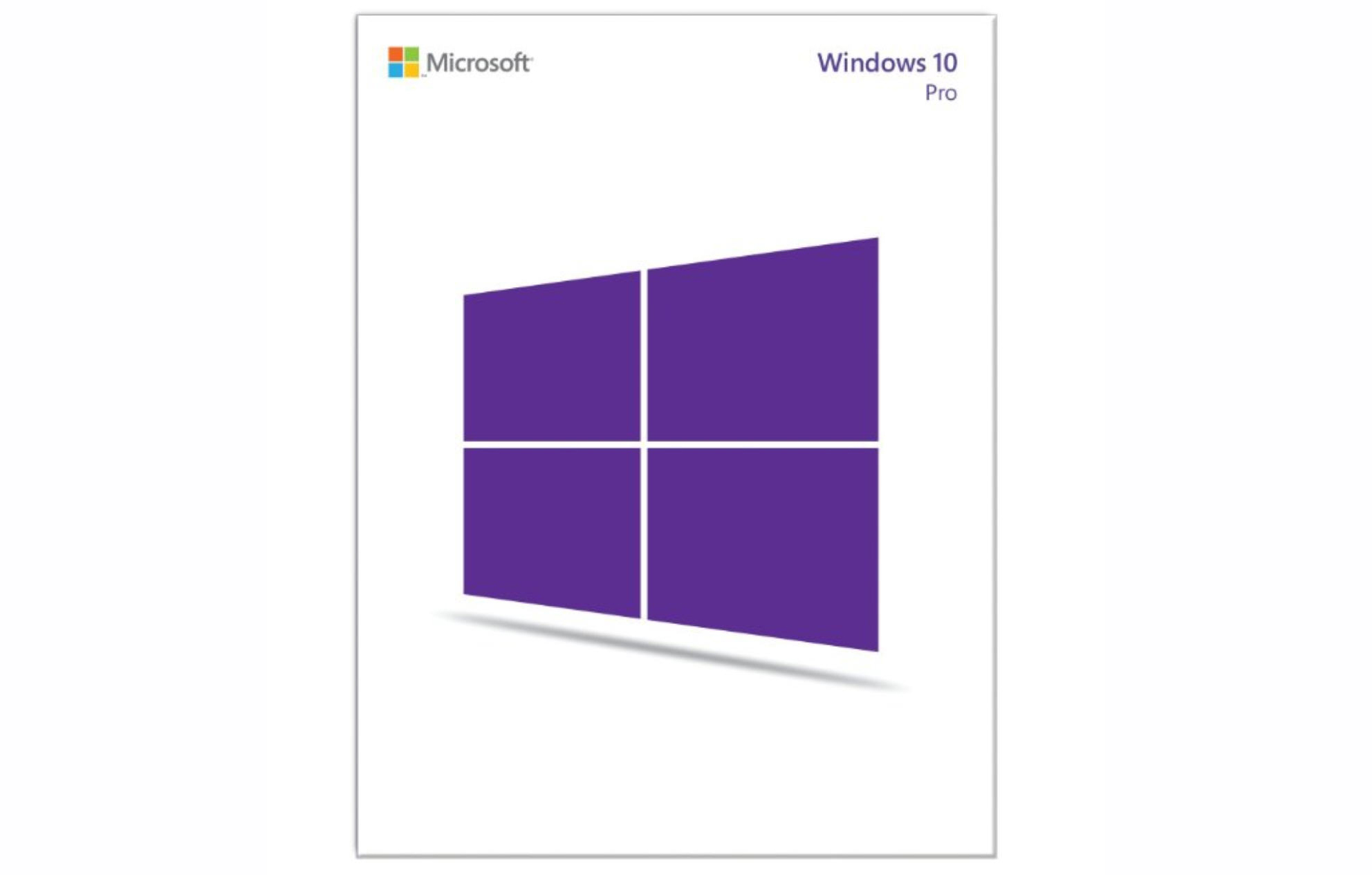
Microsoft is set to launch Windows 10 on July 29, and if you’re running Windows 7, or later, you can already reserve your free upgrade through the Get Windows 10 app in the system tray. If you don’t have a valid Windows 7 or 8.x license (you’re running XP, for example), or you want to install Windows 10 on a new system, you’ll need to buy a copy of the OS.
The good news is Windows 10 Home and Pro are now available to pre-order on USB flash drives direct from Amazon.
Home will set you back $119.99, while Pro is $199.99. Amazon, to its credit, does make it clear that a free Windows 10 upgrade is available for Windows 7 and 8.1 customers, so hopefully that will stop people from buying the OS unnecessarily.
While you can pre-order the Windows 10 flash drives today, you won’t get the products in time for launch day. In fact, you’ll have to wait over a fortnight beyond that as they won’t be made available until August 16.
You can pre-order Windows 10 Home and Windows 10 Pro from Amazon now.
-

US consumers losing interest in smartphones, but Microsoft 'delights'
Publié: juillet 16, 2015, 1:56pm CEST par Wayne Williams

Despite the introduction of some impressive smartphones in the past year it appears that the market is showing signs of contracting in the US.
According to a new report from Argus Insights, following a strong holiday season, US smartphone demand in Q2 (ending June 30 2015) dropped steadily and is down 8 percent compared to June 2014. While Samsung and Apple remain the top smartphone brands, Samsung appears to have failed to woo consumers with its two new flagship devices, the Samsung Galaxy S6 and S6 Edge.
Argus Insights measures mindshare, which predicts demand. What that means is the company uses curated analysis of global consumer reviews and social media conversations to reveal what is "delighting" and "disappointing" the market. Instead of viewing shipments, it used data compiled from approximately 622,000 consumer reviews since January 2014 to work out levels of interest, and therefore demand.
While the launch of the Galaxy S6 and S6 Edge in April mildly boosted consumer mindshare in Samsung, it came at a time when overall consumer interest was falling, and so failed to increase demand.
Apple was the only major smartphone manufacturer to post mindshare gains in Q2 according to Argus Insights, with high levels of interest in all of its mobile devices, including the aging iPhone 5.
While Apple and Samsung were ranked among the most "delightful" smartphone manufacturers, Microsoft saw an increase in delight from the few consumers reviewing its Lumia 640 and Lumia 535 handsets, which actually made Microsoft "the most delightful" of the quarter, even if actual sales were far from stellar.
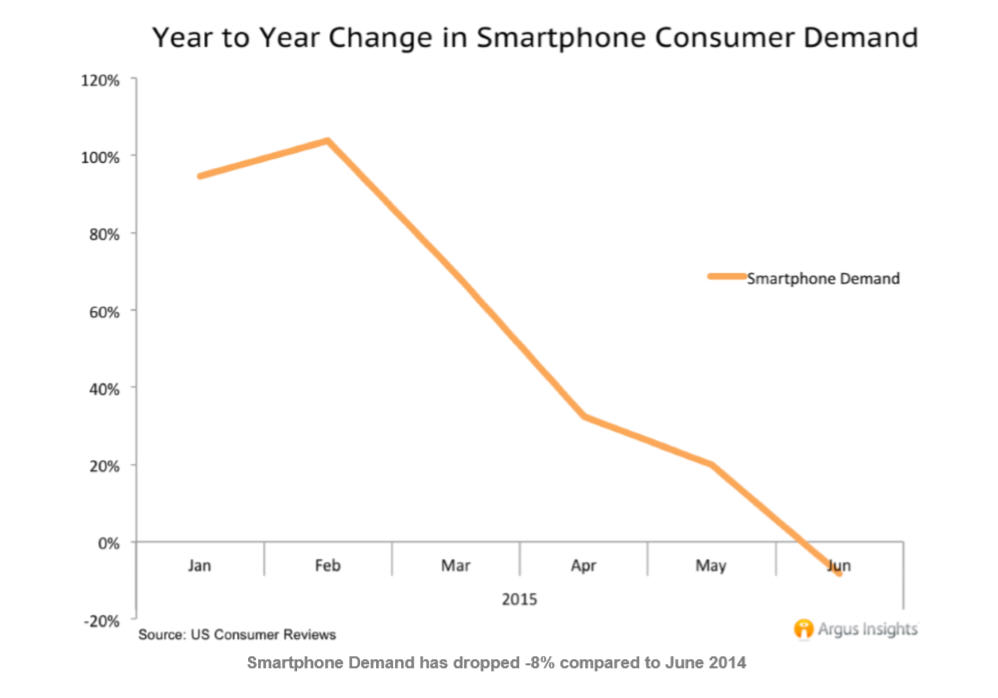
"This last quarter showed a very dramatic decline in consumer interest in the available smartphones in the US, and even the latest Samsung flagship phones barely made a difference in overall excitement,” said John Feland, CEO and founder, Argus Insights. “In fact, iPhone 6 demand, as measured by consumer review analysis, jumped when customers waiting to purchase and apparently open to buying a Samsung, instead chose an Apple iPhone. Even the early launch of the Note 5 is unlikely to take share away from Apple unless Samsung delivers more than just upgraded hardware. It seems at this point, with such a flagging in consumer interest, that perhaps the smartphone market has hit a saturation point".
Photo Credit: Shutterstock/Antonio Guillem
-

Microsoft no longer providing any form of security for XP
Publié: juillet 16, 2015, 10:42am CEST par Wayne Williams
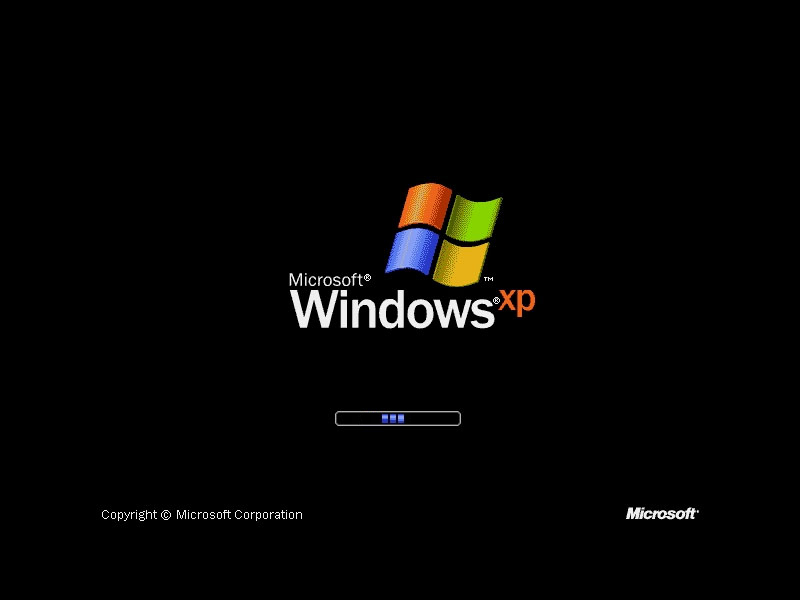
Bad news, yet again, for those Windows users stubbornly refusing to leave XP. Microsoft might have ended support for the ancient OS back in April 2014, but it was still providing the Malicious Software Removal Tool and updates to Microsoft Security Essentials, offering a modicum of security.
However, as of this week, XP users will no longer receive those updates, leaving them exposed to more threats.
Of course anyone clinging on to XP likely won’t be too bothered by this news. They’re no doubt running some form of third-party security software and hoping for the best anyway, so Microsoft completely turning its back on them won’t make any difference.
The software giant will be hoping that Windows 10 will appeal to XP users and finally get them to switch operating systems, but as the free offer doesn’t extend to anyone not on Windows 7 or 8.x (unless they become Windows Insiders), it’s likely many of the estimated 180 million XP die-hards will stay where they are, despite the risks.
-

Windows 10 Insider Preview Build 10240 has a special purpose
Publié: juillet 15, 2015, 9:47pm CEST par Wayne Williams

Earlier today The Verge stated that Windows 10 has been finalized, and Build 10240 was the version of the new OS that Microsoft has selected as the final Release To Manufacturing (RTM) copy. While Microsoft has just released that very build -- after briefly suspending updates -- it has neither confirmed nor denied its RTM status. The company has made it clear however, that Insiders can expect still more builds before the full version is released to the world at large on July 29.
However, what’s interesting is that Build 10240 isn’t an ordinary release. It has the bug fixes you’d expect from a new build, and the desktop watermark has been removed, but that’s not what’s most significant about it. RTM or not, Build 10240 serves a vital purpose.
For the first time since the Insider program began, Microsoft is releasing the new build to both the Fast and Slow rings simultaneously. It’s not making it available in ISO format, and the build is also only available to Insiders who are already running a preview version (10074 or newer). In fact, Microsoft has removed all ISOs and keys, preventing anyone from cleanly installing the new OS from scratch. From now on, any new builds, and updates, will only be available through Windows Update.
That’s because Build 10240’s primary raison d'etre -- as confirmed to me by a Microsoft insider -- is to test the upgrade process in advance of the roll out in two weeks’ time. Microsoft could offer Build 10240 as an ISO, but as Windows Insider chief Gabriel Aul himself says, "we really need people to be using the upgrade path".
Rolling out an upgrade to as many Windows Insiders as possible (5 million + potential systems), will give Microsoft a clear idea of how smoothly the roll out process will likely go on July 29 and allow the software giant to make further tweaks to the "release pipelines and processes" it’s been preparing over the past couple of days.
Windows Insiders have helped Microsoft shape the OS, and now by installing Build 10240 they are helping to ensure -- in theory at least -- that Microsoft delivers as smooth a roll out as possible on the big day.
Photo Credit: Shutterstock/Sharpshutter
-

Think the iPod is dead? Apple disagrees, revamps range with new colors, and 'best iPod touch yet'
Publié: juillet 15, 2015, 5:29pm CEST par Wayne Williams
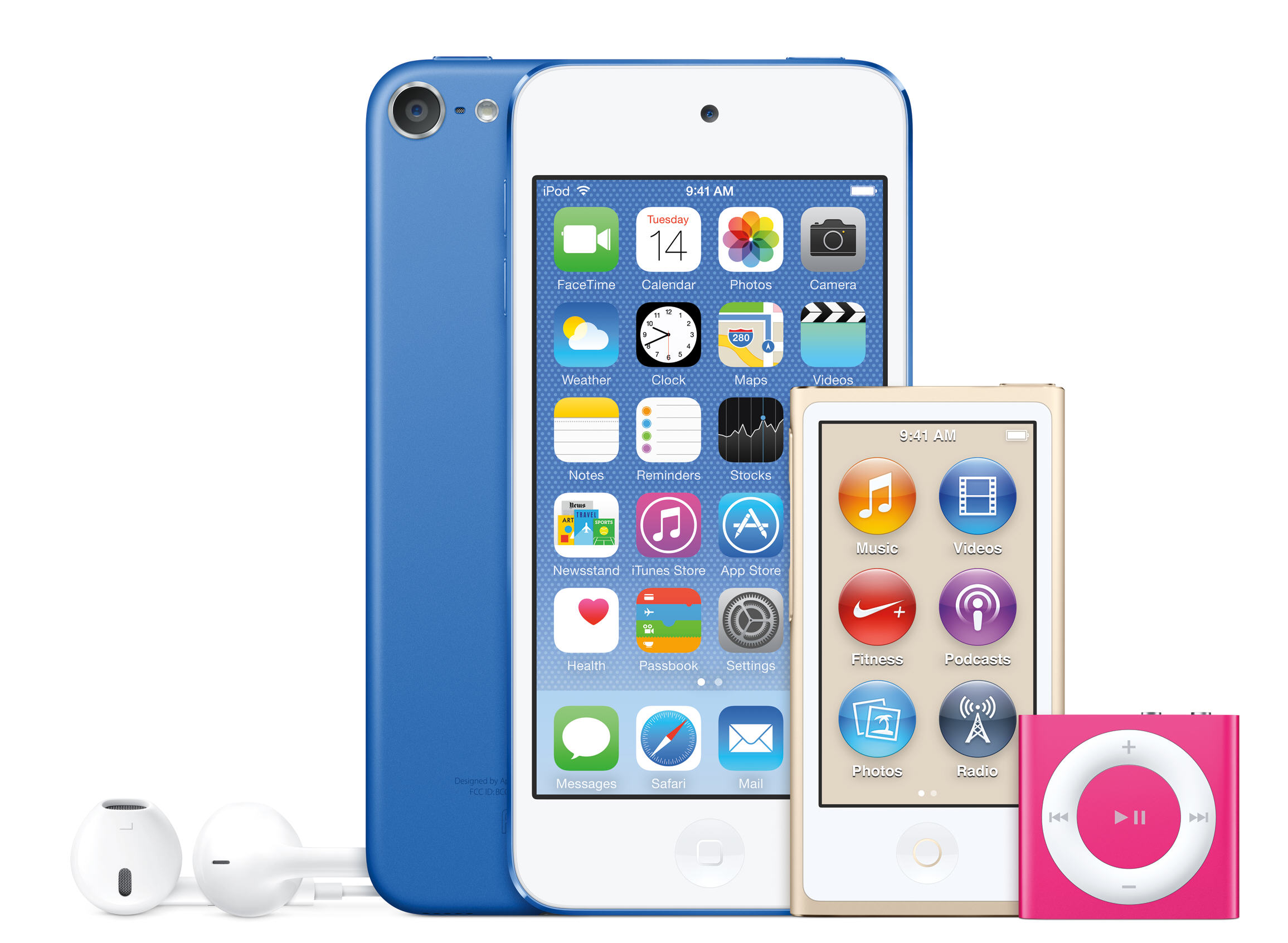
There has been talk over the past few days that Apple was planning to release updated iPods, and today the rumors are proved correct. As well as a new lineup of colors for all iPod models, including space gray, silver, gold, pink and blue, Apple has unveiled what it’s calling "the best iPod touch yet".
The new iPod touch features the same A8 chip as in the iPhone 6, delivering 10x faster graphics performance, an 8 megapixel iSight rear camera, and improved FaceTime HD front camera for selfie lovers. Fitness tracking is improved too thanks to the inclusion of the M8 motion coprocessor.
Naturally, the catalyst for the updated iPods is the newly launched Apple Music.
"iPod touch gives customers around the world access to Apple Music, the App Store and iOS, the world’s most advanced mobile operating system, starting at just $199," says Greg Joswiak, Apple’s vice president of iPhone, iPod and iOS Product Marketing. "With big advancements like the A8 chip and the 8 megapixel iSight camera, customers can experience next-level gameplay, take even more beautiful photos and enjoy their favorite music, TV shows and movies".
The new iPod touch is priced at $199 for the 16GB model, $249 for 32GB and $299 for 64GB. There’s also a new 128GB model for $399.
The entire iPod family in its five new colors is available starting today through the Apple Store (www.apple.com), Apple’s retail stores and select Apple Authorized Resellers.
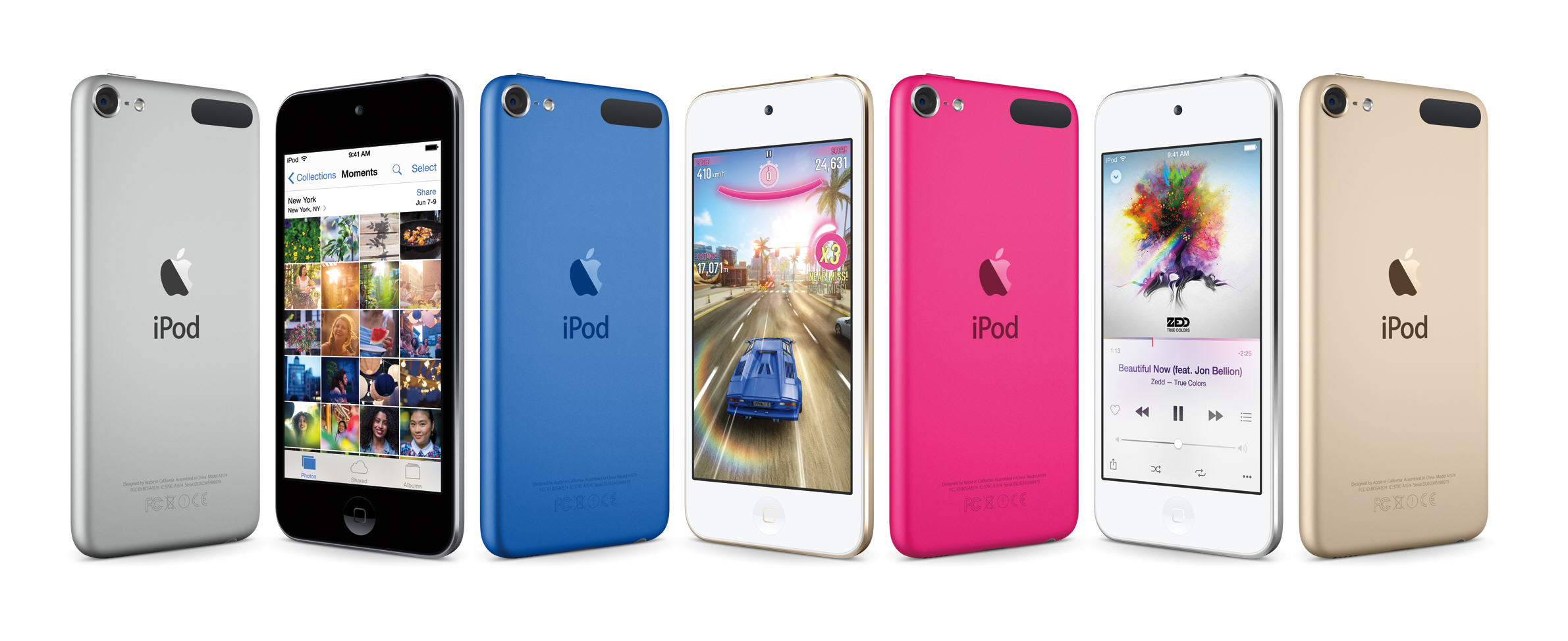
-

'Hey, Siri, play the sound of farts'
Publié: juillet 14, 2015, 3:10pm CEST par Wayne Williams

Apple Music can be used for more than just streaming songs to your iPhone or iPad. It can also be used to play sound effects. Who hasn’t wanted to have their endeavors greeted by a round of applause, or their jokes met with howls of hysterical laughter?
Sure, you have to summon Siri to use the trick, which reduces the spontaneity somewhat, but there’s still plenty of fun to be had.
All you have to do is ask Apple’s personal assistant to play the effect you require, and provided you’re signed up to use Apple Music and online, she’ll duly oblige. Results can be hit and miss, it all depends on what you’re asking her to play.
"Play the sound of farts" generates the sort of noises you’d expect, and you can also ask Siri to play sounds of "a crowd booing", "applause", "footsteps", "bees buzzing", "waves", "laughter" and much more.
Of course it all goes a bit wrong if Siri doesn’t understand you, or you happen to ask her to play a sound effect and there’s a song of that name (and if you don't use the word "sound" you might get a music track rather than an effect), but it’s still a spot of childish fun to try when bored on a long train journey.
Photo Credit: Vikacita/Shutterstock
-

HSBC prematurely announcing Apple Pay in the UK causes Apple stock to rocket
Publié: juillet 14, 2015, 2:00pm CEST par Wayne Williams

It’s not exactly insider trading, but if you want to make money on the stock market, monitoring social media in real time could help give you the edge.
On Sunday 12 July, HSBC tweeted a reply to a follower confirming that Apple Pay was due to launch in the UK on Tuesday 14th, beating Apple to the announcement. As a result, investors rushed to buy Apple Stock, causing a sizable spike in interest.
Those investors who spotted the tweet early, and acted quickly enough, stood to make decent gains.
Gareth Mann, CEO of Data analytics provider Digital Contact explains: "Even the smallest slip of the tongue on social media can affect the markets and HSBC’s blunder on Sunday was a great example. Our data tracker, which crunches millions of data points a second, showed a huge spike in noise around Apple just after 9pm on Sunday 12th July. Those that were aware of the noise, which happened to be an accidental announcement that Apple Pay was due on Tuesday 14th, were well placed to make a call on the markets".
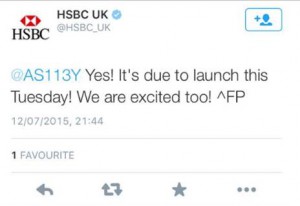 As a probable result of the blunder, Apple stock opened on Monday at $121.59, up from its $120.09 close, and since then has risen to over $125.
As a probable result of the blunder, Apple stock opened on Monday at $121.59, up from its $120.09 close, and since then has risen to over $125."This is just another proof point that serious investors need to be monitoring the millions of social channel in real time if they want to stay ahead of the curve", Mann adds.
It’s ironic that it should have been HSBC that jumped the gun in announcing Apple Pay’s UK arrival, seeing as the bank isn’t one of those supporting the tap-to-pay service at launch.
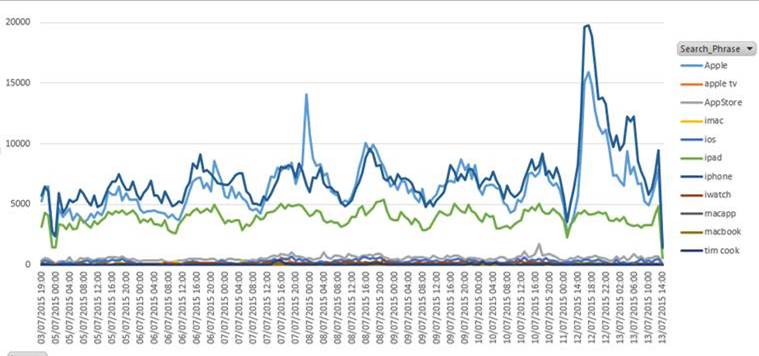
Photo credit: PathDoc / Shutterstock
-

Apple Pay arrives in the UK -- Here's how to use it
Publié: juillet 14, 2015, 10:03am CEST par Wayne Williams
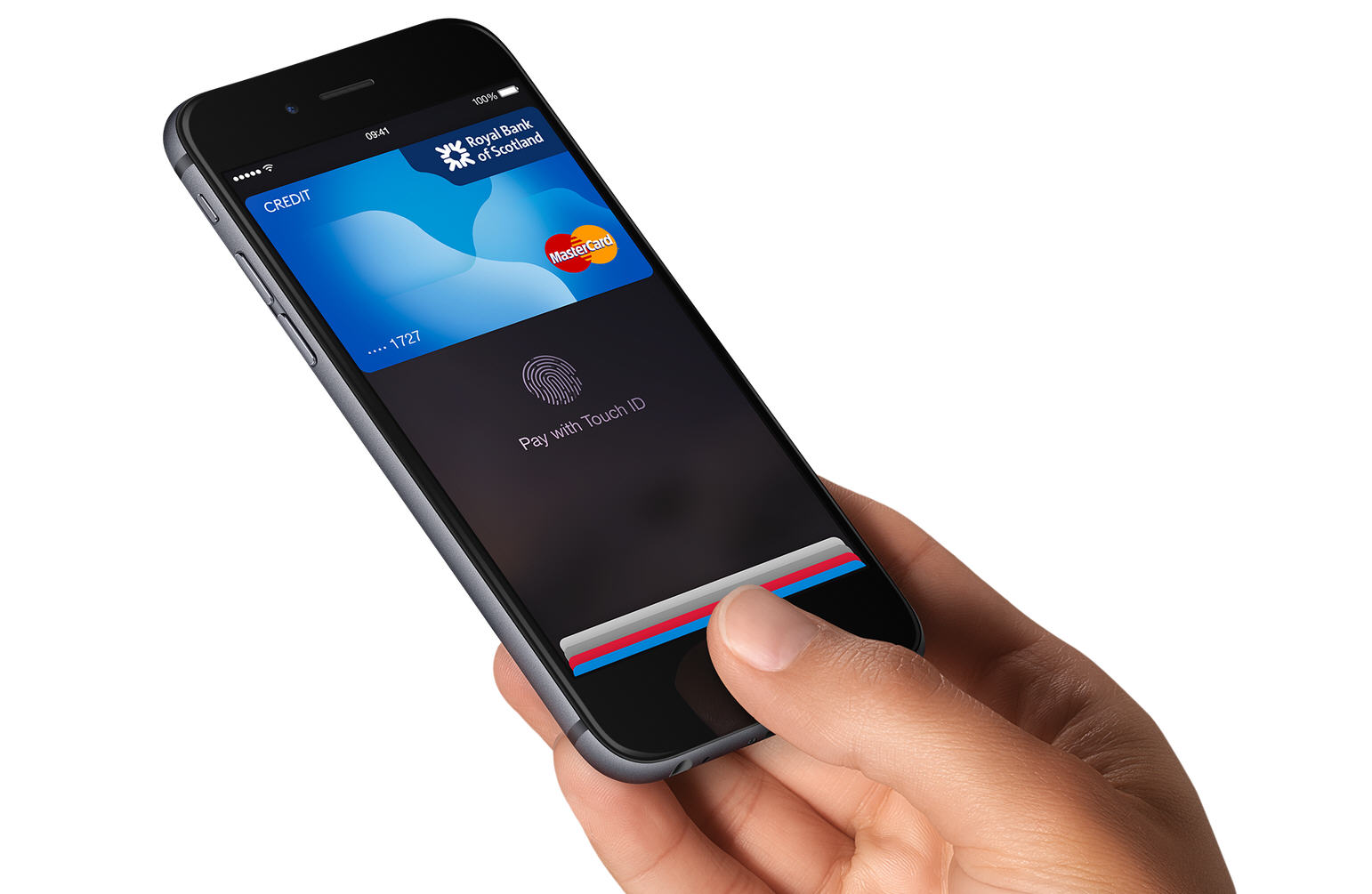
While Apple Pay has been available in the US for a while now, the tap-and-pay service finally launches in the UK today. It works in the same way as contactless cards -- you just tap your iPhone 6, 6 Plus, or Apple Watch on a payment terminal to make a payment.
It’s very easy to use, secure, and has a maximum purchase limit of £20 per transaction (rising to £30 in September). This is what you need to do to use it.
Firstly you’ll need to make sure you’re running the latest version of iOS. If you are, the next step is to add your credit or debit card(s).
Not all banks support Apple Pay, but many of the major ones do. NatWest, Nationwide Building Society, Royal Bank of Scotland, Santander, First Direct, and Ulster Bank are all supporting the service, and more are arriving in the autumn. Barclays is still on the fence, however. HSBC was expected to be part of the first wave of banks to be included, but now says it will support the service by the end of July.
On an iPhone 6 or 6 Plus, open the Passbook app and tap the + button at the top right. You can add your cards here. You can quickly add a card linked to your iTunes account by entering the CVV security code from the back of the card. For new cards, take a photo using your device’s camera and add the required additional information.
Apple Watch users (including those with an iPhone 5 or 5s) can add cards through the Apple Watch app on the phone. Just select the Passbook & Apple Pay option.
Apple Pay can be used both in-store and online and is secure as it uses a token system which ensures the card details don’t get passed on to the retailer. Payments are verified using Touch ID. It’s slower than contactless cards, but the additional security is worth the slight delay.
When it’s time to pay for something, hold your iPhone 6 or 6 Plus about an inch away from the payment terminal while holding your finger on the Home button. To pay with an Apple Watch just double-click the side power button, and select the card to use. Tilt the watch at the payment terminal and you’ll receive the usual Watch feedback when the payment has been made.
-

Microsoft to make Surface range more widely available, but delays Surface Hub
Publié: juillet 13, 2015, 8:49pm CEST par Wayne Williams
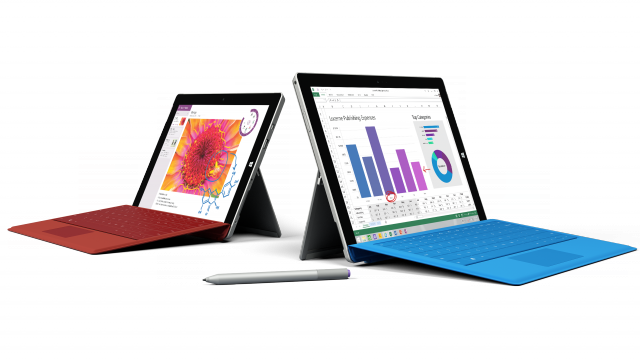
It’s not been exactly difficult to get your hands on a Surface slate, but Microsoft is set to dramatically expand the number of partners selling its touch-screen devices in the coming months.
Timed, naturally, to coincide with the launch of Windows 10, Microsoft says it will go from "having a few hundred partners selling and servicing Surface to a few thousand globally".
The move shows confidence in the tablet line which has had mixed fortunes since it first launched back in 2012. "This expansion of our partnerships is directly related to our optimism for much broader success that will come with the release of Windows 10", says Brian Hall, General Manager, Surface.
Surface Hub, Microsoft's 84-inch touch screen computer aimed at businesses, has seen "strong demand", and as a result the company will be tuning its "manufacturing process to prepare for production at broader scale".
Interestingly, what this actually means is the company has delayed shipping the Hub. This is usually the sign of manufacturing issues, but if Microsoft says it's due to the Hub being popular, who are we to argue?
Microsoft will continue to take pre-orders (because, hey, money in the bank) but the September 1 shipping date is no more. The company says it will provide more details on its "updated shipment schedule" in early August.
-

Microsoft reveals its Windows 10 launch celebration plans
Publié: juillet 13, 2015, 3:07pm CEST par Wayne Williams

While there’s no guarantee you’ll get Windows 10 on July 29, that’s the official launch date for the new OS. To celebrate the rollout, Microsoft is planning "global fan celebrations, joint efforts with thousands of retailers, including Microsoft store locations, a new global advertising campaign, and a new year-long initiative to celebrate people and organizations making a difference around the world". What no cake?
"Windows 10 was built to empower people to do great things. We are thrilled to celebrate the launch of Windows 10 with our fans," says Yusuf Mehdi, corporate vice president of Windows and Devices Marketing at Microsoft. "We’ll mark the launch of Windows 10 by celebrating the people and organizations that upgrade the world every day -- and by helping them do more in their communities".
Because Windows Insiders have helped Microsoft to shape the OS -- although how much input (beyond identifying bugs) users have actually had is debatable -- they will be among the first to receive Windows 10 and are invited to join fan celebrations in 13 cities around the world, including Sydney, Tokyo, Singapore, Beijing, New Delhi, Dubai, Nairobi, Berlin, Johannesburg, Madrid, London, Sao Paolo, and New York City. Fan celebrations will offer "hands-on opportunities, experiential demos, entertainment and opportunities to meet the Windows team". It’s possible there might be cake there, but Microsoft hasn’t mentioned it.
The software giant will naturally be celebrating the launch in all of its stores, and there will be Windows 10 pop-up demo experiences, prizes, giveaways and so on, although not in all locations.
It will come as no surprise that Microsoft will be launching a new global advertising campaign for Windows 10. Starting on July 20 in the US, and appearing around the rest of the world from July 29, the TV and digital ads will highlight how Windows 10 delivers a "more human way to do..."
In addition, Microsoft will be launching a year-long initiative to celebrate those who inspire and empower others, which it's calling Upgrade Your World. The tech giant will be partnering with 10 global and 100 national nonprofits and offering a $10 million cash investment in support of their missions and to promote awareness of their causes. The participating global nonprofits are CARE, Code.org, Keep a Child Alive, Malala Fund, Pencils of Promise, Save the Children, Special Olympics, The Global Poverty Project, and The Nature Conservancy. But wait, you say. That’s just nine organizations! That’s right. From July 29, Microsoft will be inciting people around the world to nominate a 10th global non-profit to participate.
The company will also be encouraging its employees to do volunteer community work as part of the initiative, and will be giving them a paid "day off" to get involved.
More information on how you can #UpgradeYourWorld can be found at [windows.com].
Photo credit: WilleeCole Photography / Shutterstock
-

Over a quarter of IT workers believe Terminator's Skynet will happen one day
Publié: juillet 13, 2015, 9:10am CEST par Wayne Williams

According to a recent YouGov poll, 13 percent of IT decision makers believe technology could destroy the Earth, with the leading causes of our demise including the prevention of evolution (74 percent), military and warfare (66 percent), artificial intelligence (44 percent), and environmental issues (38 percent).
And 27 percent of those polled believe the Terminator plot and Skynet (which deploys the army of Terminators against us) could become a reality in the future.
Other concerns raised include increased laziness due to reliance on new technology, privacy issues, mass unemployment due to automation of human jobs, and lack of social skills in younger generations.
But it’s OK, because 25 percent of the 500+ people polled thought tech would in fact save the world, with 80 percent citing health and medical advancements as having the most positive impact.
Other ways they believe tech could save the world include:
- Helping the environment (74 percent) (e.g. combating climate change).
- Artificial intelligence (66 percent) (e.g. robots protecting humans).
- Space (60 percent), (e.g. exploration, expansion and asteroid detection).
- Evolution (43 percent) (e.g. technology making us more intelligent).
That said, the poll, which was commissioned by the online IT job board CWJobs, found that 57 of IT workers were more level headed and believed that technology would neither save nor destroy the planet. 5 percent simply didn’t know.
You can find out more about the poll here.
Image Credit: Orion Pictures
-

IoT Tech Expo arrives in London this December
Publié: juillet 12, 2015, 8:50pm CEST par Wayne Williams
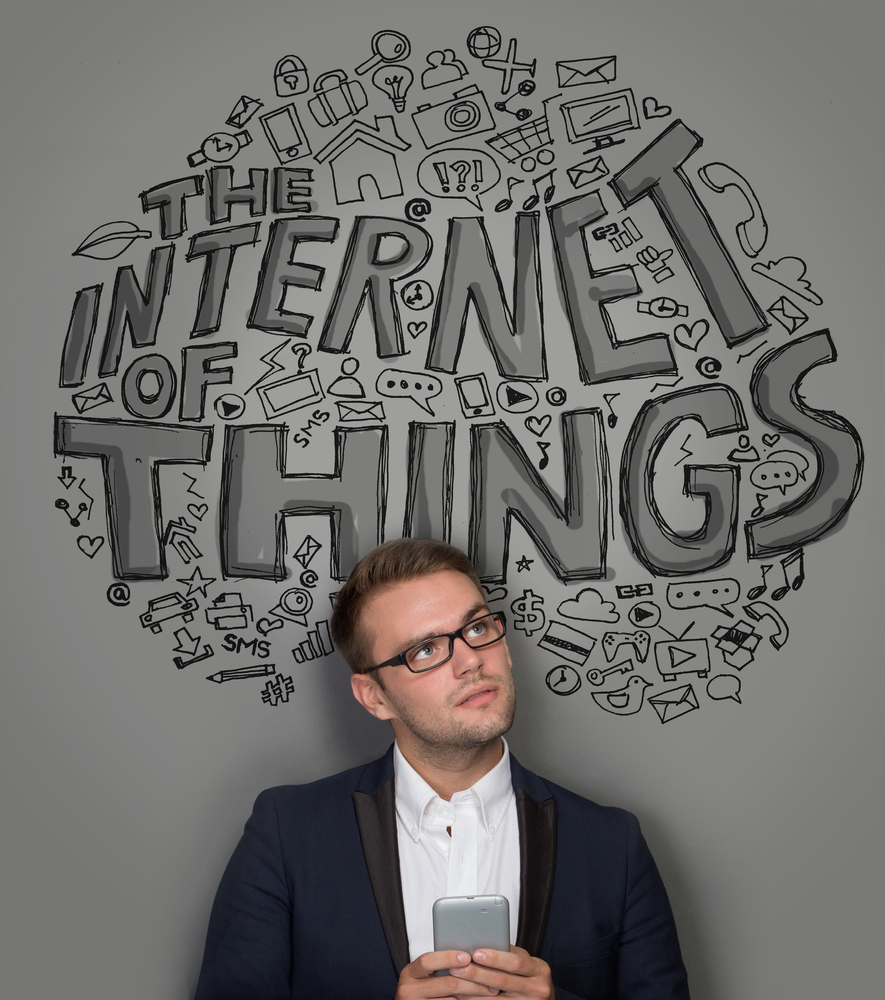
The Internet of Things is definitely a technology that’s going to have a huge impact on our lives in years to come. According to IDC, the IoT market is set to be worth a staggering $1.7 trillion by 2020.
This December will see the launch of a new Internet of Things event designed to capitalize on this growing sector. The IoT Tech Expo Europe 2015 will be taking place at Olympia Central, London, on 2nd -- 3rd December, and is set to showcase the most cutting edge technologies from more than 100 exhibitors and 200 speakers.
There will be seven dedicated conference tracks covering Smart Cities, Connected Industry, Wearables, Developing for the IoT, Connected Living, Data & Security and Connected Health. It will feature agendas advised by industry leaders including; Citi, TVH, Jawbone, Bosch, BT, Ford, Boeing, Beecham Research, Misfit, Nordstrom, Airbus, and more.
The event organizers expect to welcome over 5,000 attendees and BetaNews will be there to bring you all the latest news.
You can find out more about the event at www.iottechexpo.com/europe/
Photo credit: Odua Images / Shutterstock
-

Windows 10 Mobile Insider Preview Build 10166 arrives on the Fast ring
Publié: juillet 10, 2015, 9:44pm CEST par Wayne Williams

Yesterday, Microsoft released a new Windows 10 Insider Preview build for PCs. That version was Build 10166. Today, the software giant releases a new Windows 10 Mobile Insider Preview, with the same build number. Try not to get the two confused.
The new mobile build is rolling out to Windows Insiders on the Fast ring now, and like its PC number-sake, it offers lots of small changes and feature tweaks, although the focus is mostly now on improving stability and squashing bugs. The Mobile release won’t be happening any time soon, but Microsoft is clearly keen to get all of the major issues dealt with quickly.
The majority of the known issues listed in Build 10149 have been addressed in this new release. Microsoft has also fixed the problem with the missing post-upgrade migration status screen. To anyone updating to Build 10149 it looked as if the process had frozen, when it fact it hadn’t. Another bug that has been resolved in the new build is the problem some Insiders encountered whereby they were unable to unlock their phones despite entering the correct PIN.
See also: Windows 10 Insider Preview Build 10166 now available on the Fast ring
Problems with incorrect app colors have been resolved and the reliability of app downloads and updates from the Store have also been improved.
The tiny battery icon has been enlarged as well.
Microsoft suggests that once you’ve updated to the new build you go to the Store and grab the latest app updates, as there have been lots of improvements made to those in recent weeks.
-

Microsoft Lumia 735 now available to buy in Verizon Wireless stores
Publié: juillet 9, 2015, 10:00pm CEST par Wayne Williams
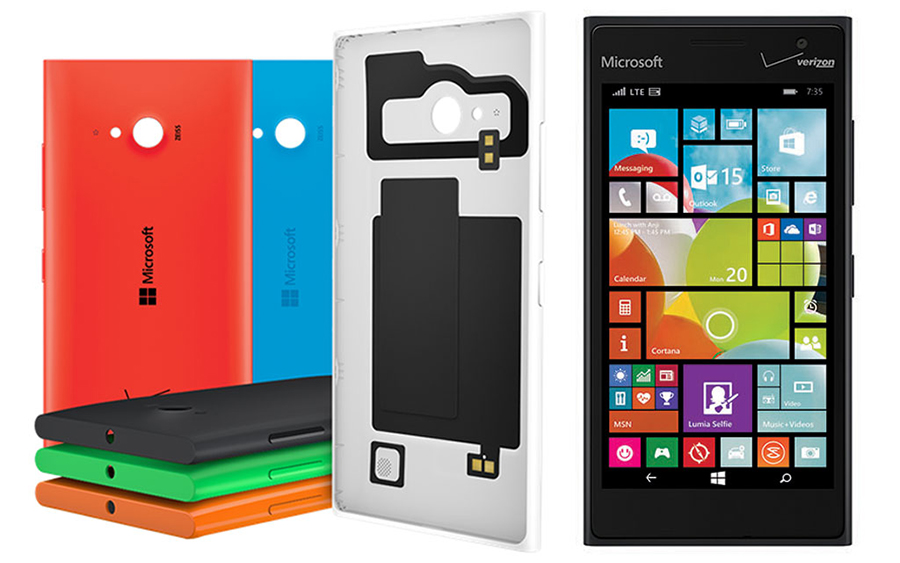
The Lumia 735 was added to Verizon Wireless’s line up last month, but was only available to purchase online. Today, that changes and you can now pick up the smartphone from any of Big Red’s brick and mortar stores.
If you’ve had your eye on the phone for a while, there are some incentives being offered to help push you into making the move.
From now until July 31, customers who buy and activate the Lumia 735 from Verizon will receive one year of Office 365 Personal (while supplies last, of course). This offer also comes with 1 TB of free OneDrive storage, which is handy.
The Lumia 735 runs Windows Phone 8.1 (and can be upgraded to Windows 10 Mobile once the new OS is released) and its specs include a 4.7-inch HD OLED display, 1.2 GHz Snapdragon 400 processor, 2220 mAh battery, and 16 GB of onboard memory. This can be expanded by another 128 GB via microSD card. There’s a front-facing, wide-angle 5-megapixel full HD camera for selfies and a 6.7 megapixel auto-focus, rear-facing camera with ZEISS optics. The phone also offers wireless charging.
The Lumia 735 will set you back $29.99 on a two-year contract or $8 a month for 24 months with 0 percent APR on Verizon Edge. This is for the dark gray version. If you prefer the orange, green, white, red, or cyan casings you’ll need to add $24.99 to the price.
If you bring your phone number to Verizon, you’ll get a $100 bill credit for each new smartphone activated on Verizon Edge.
The Lumia 735 is also available in the Microsoft Store for $199 with no contract.
-

Windows 10 Insider Preview Build 10166 now available on the Fast ring
Publié: juillet 9, 2015, 7:23pm CEST par Wayne Williams
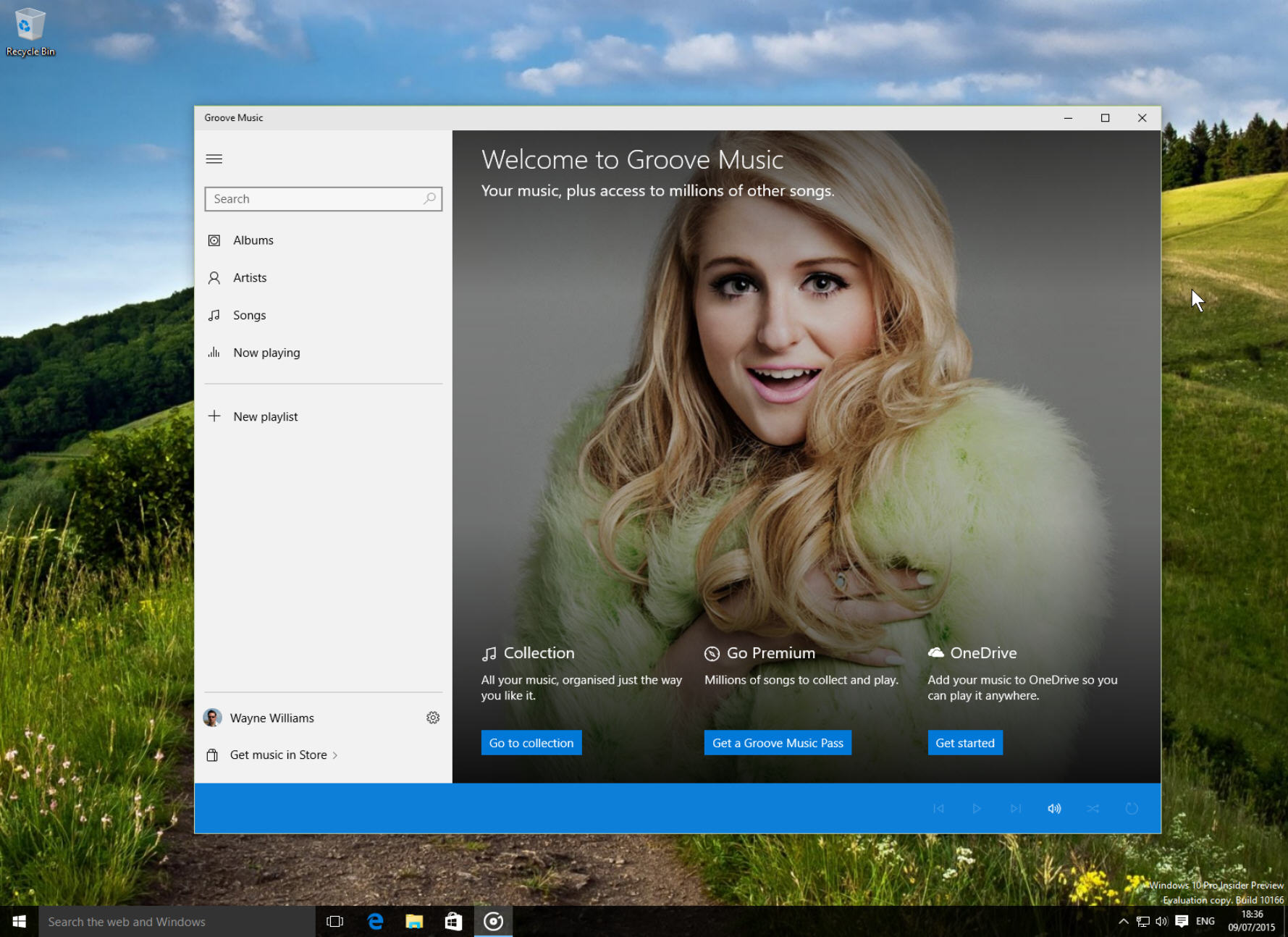
Last week, Windows Insiders on the Fast ring were treated to three new builds of Windows 10. As you’d expect, with the launch date getting ever nearer, things are seriously accelerating. New ISOs of the latest build, 10162, were pushed out soon after, followed by the same build becoming available to Insiders on the Slow ring.
Today, after a short wait, the new releases continue, with Windows 10 Build 10166 arriving on the Fast ring. As you’d expect, there are no major changes. It is, as Microsoft describes it, all about "bug fixing and fit-and-finish" from here on. One big change is that the Xbox Music app has been rebranded, and now appears as Groove Music.
Microsoft is asking Insiders to continue to report issues, because at this stage it’s more important than ever to identify and fix any bugs that have so far slipped through unnoticed (or been randomly introduced between builds). The software giant is also insistent that Insiders on older builds should update to this one. Either through Windows Update, or by firstly installing the Build 10162 ISOs from the Windows Insider Program website and then updating.
A corresponding Windows 10 SDK preview release is also available with this build. More details on this will appear on the Building Apps for Windows blog in due course.
Finally, the ability to purchase paid Wi-Fi through the "Buy Wi-Fi from Windows Store" option that appears in the list of networks is live in this new build. The app will let you securely pay for your Wi-Fi with a credit or debit card, PayPal, Microsoft Gift Card, or Wireless Carrier Billing. At the moment you need to be in the Seattle area to make a purchase, but Microsoft says it will be rolling the feature out across the rest of the US "soon".
Anyway, don’t let me keep you -- start updating now.
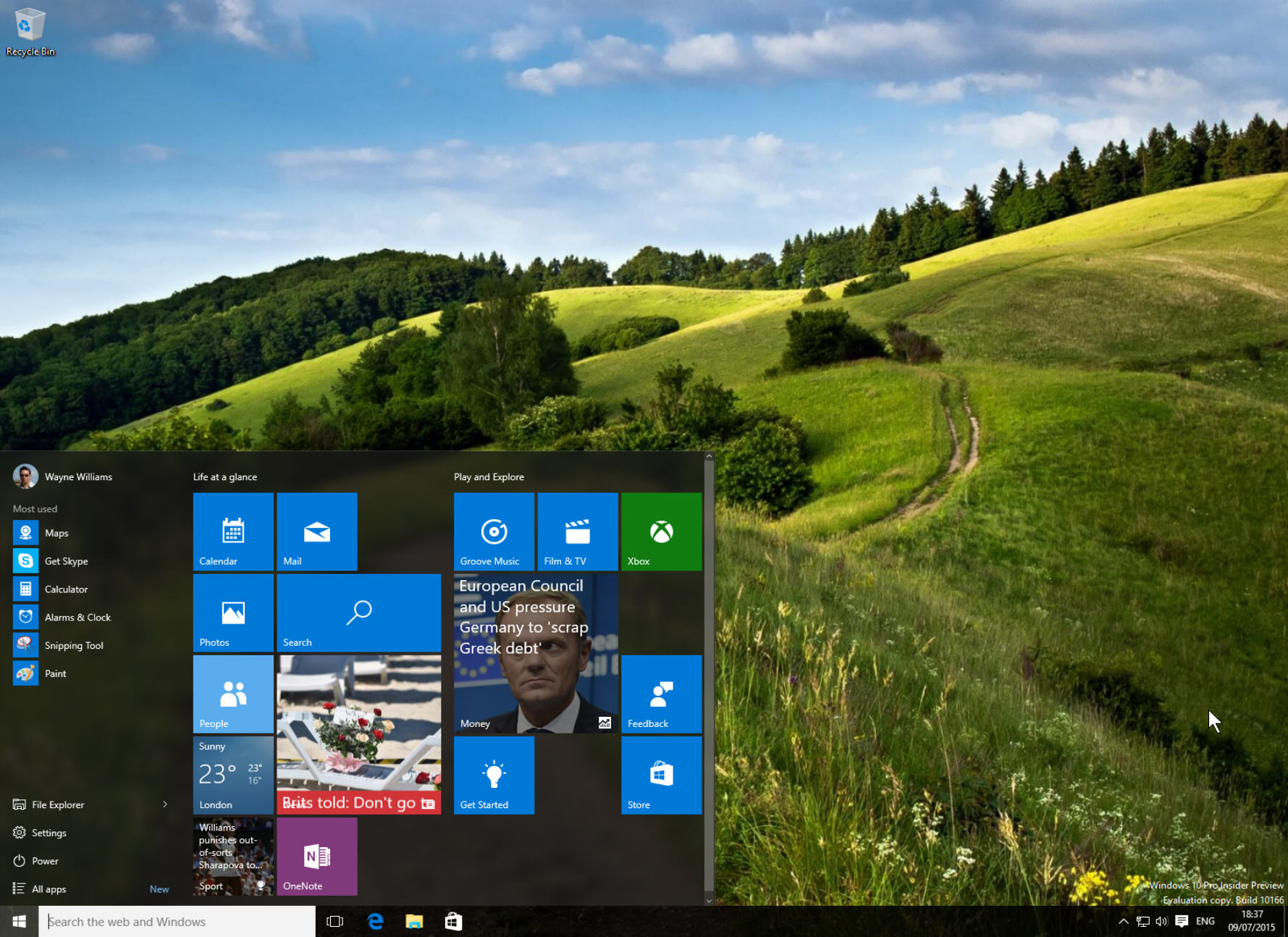
-

Download a full movie or TV show on your mobile device in minutes using Digiboo Zones
Publié: juillet 9, 2015, 3:02pm CEST par Wayne Williams

If you do a lot of traveling -- especially when covering long distances -- taking some form of entertainment with you to help while away the hours is a must. You can load a laptop, tablet or smartphone with movies and TV episodes, but if you want to download or stream additional media while away from home, you’ll find yourself at the mercy of whatever connections are available to you.
Location-based retail entertainment download service Digiboo is aiming to make it much easier -- and faster -- to download movies and TV shows when on the go. Announced today, Digiboo Zones, is a speedy download service that will allow travelers to download content to mobile devices in around a minute.
The new service is app-based, and is locally anchored by a touch screen kiosk or a hidden server in select locations. Digiboo lists airport lounges, train stations, restaurants and cafes as perfect choices for "Zones".
Customers with the app can browse and download new releases and popular classics. Digiboo says content downloads directly to mobile devices in around 1-3 minutes. Encrypted files run up to 1GB per download and are optimized for mobile viewing.
"Digiboo is a breakthrough service that allows mobile customers to download a Digiboo movie to their mobile device with the fastest mobile movie download speed on earth", says Richard Cohen, CEO of Digiboo. "Digiboo doesn’t require planning ahead or remembering to download before you leave your home. Our customers can quickly and conveniently pick up a movie or two for their trip without any hassle or disappointment, and they won’t need to be connected to the internet to watch. This allows them the freedom to enjoy their movie anytime and anywhere".
Movies are usually priced at $4.99 per rental for a new release and $3.99 for a catalog classic (each download is available for 30 days to begin watching, and viewable for 48 hours -- both online and off -- once activated). However, to celebrate the launch of Digiboo Zones, customers will be able to enjoy new release movie rentals free for a limited time.
Digiboo’s App and Zone content shopping functionality is currently available for iOS devices. Download is supported for Android and PC, with the direct device shopping capability scheduled to launch for Android before September.
Digiboo Zones will initially be available at 100 high traffic locations, including airports, across the US and Canada starting today, before expanding to 2,000 locations in the next twelve months.
Photo Credit: michaeljung/Shutterstock
-

Windows 10 Insider Preview Build 10162 arrives on the Slow ring
Publié: juillet 7, 2015, 8:57am CEST par Wayne Williams
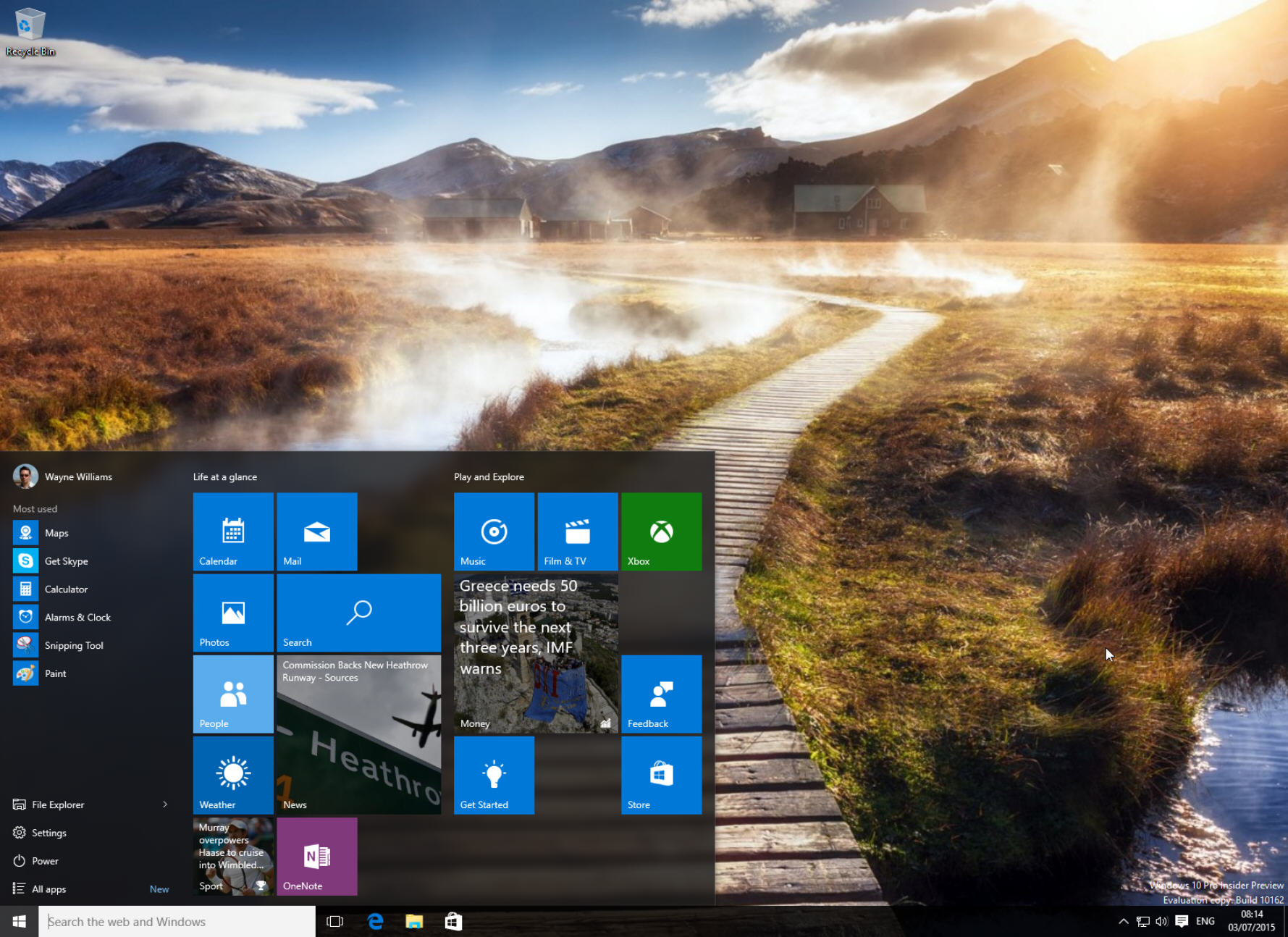
Windows 10 Build 10162 was released to Fast ring Insiders five days ago, the third new build to appear in a week. A day later, and Microsoft released ISOs of it, so anyone could install the new version, although there was still no official release to Slow ring Insiders.
Thankfully, Microsoft has deemed the latest build to be stable enough for all, and finally pushed out the update to those Insiders who prefer to receive stable builds.
The build is exactly the same as the one that went to the Fast ring last week, and that version wasn’t massively different to the previous two, with no major changes to report.
With the sort-of release date of July 29 looming, that’s to be expected as Microsoft is now just squashing bugs and cleaning things up.
It’s good to see Microsoft didn’t detect any problems with this build that prevented it from going to those on the Slow ring, suggesting that things are progressing as hoped.
-

Windows 10 Build 10162 ISOs now available to download
Publié: juillet 3, 2015, 9:18am CEST par Wayne Williams
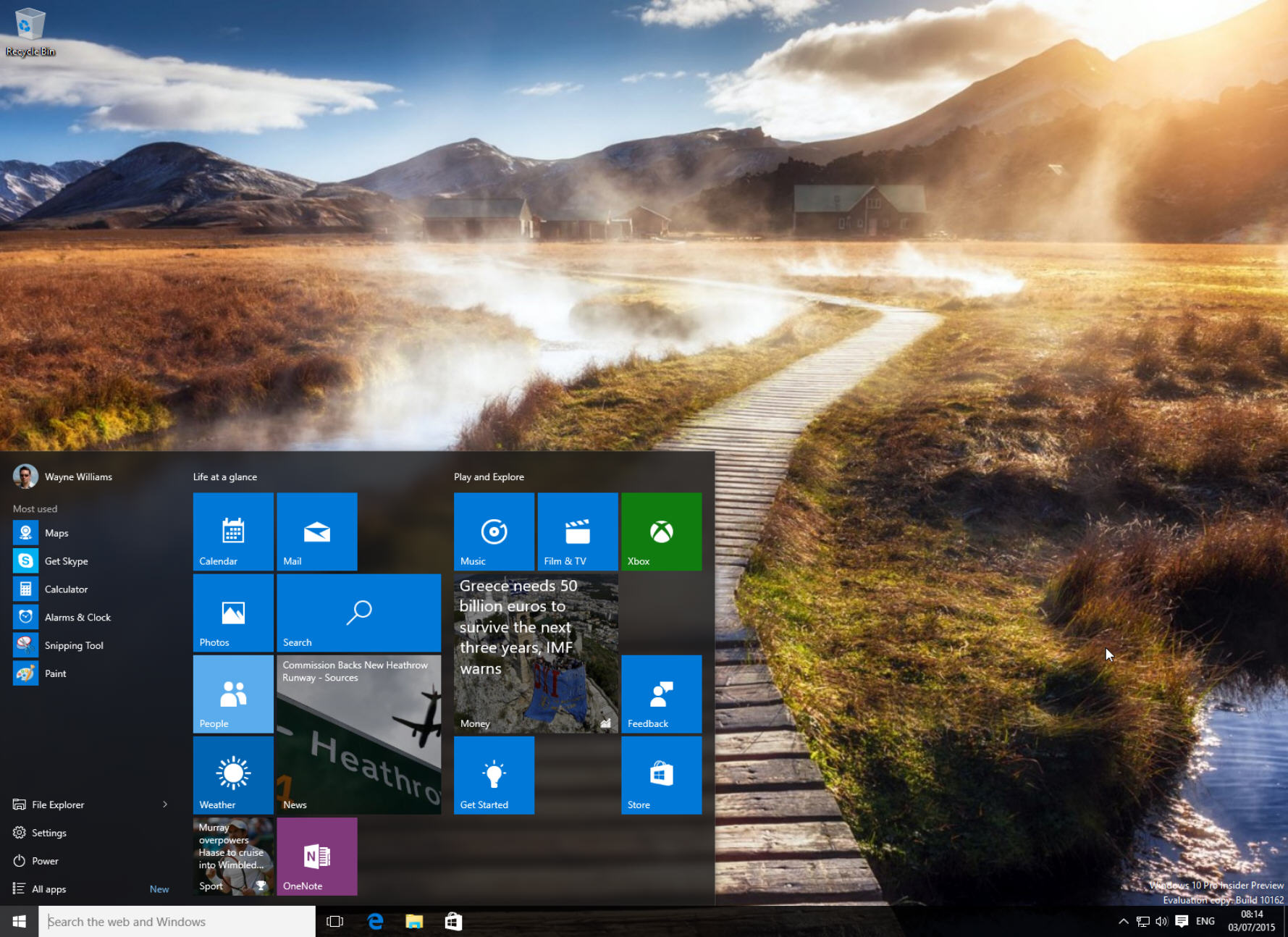
Microsoft has been very busy this week rolling out three new builds to Windows Insiders on the Fast ring. However, Slow ring Insiders haven’t had much to get excited about.
Well, today that changes as Microsoft has released ISOs for the latest build, 10162. The Slow ring release of the build hasn’t happened yet, but it’s safe to say it will be pushed out shortly, possibly later today.
If you want to do a fresh install of Windows 10, or set it up in a virtualized environment, than you'll need an ISO file and you'll find the latest ones here. As always they're offered in a choice of languages and x86 (2.89 GB) and x64 (3.86 GB) versions.
Microsoft hasn't detailed the changes in this new build, so it's safe to say that they are mostly bug fixes and cosmetic tweaks. But as these are the first new ISOs in a month (Build 10130 was the last version released in this form), anyone not on the Fast ring will certainly notice the difference.
See also: How to install Windows 10 Insider Preview on Oracle VirtualBox [Updated]
-

Intel Compute Stick with Ubuntu finally available from next week
Publié: juillet 2, 2015, 4:49pm CEST par Wayne Williams
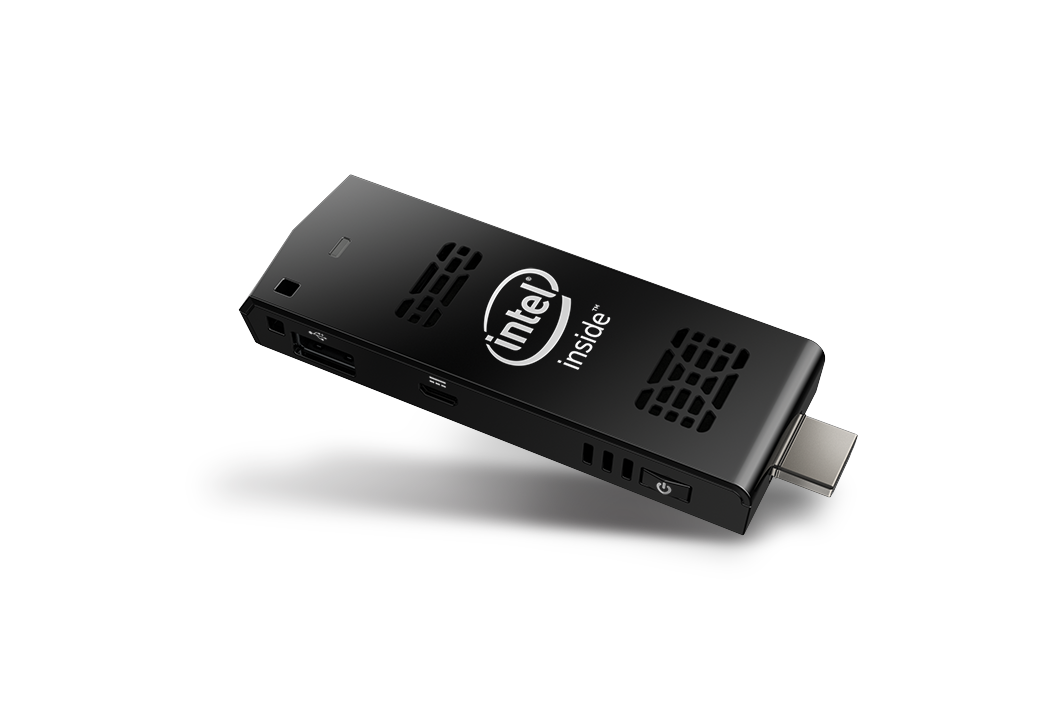
Forget desktops and laptops, the future of computing appears to be flash drive-sized sticks that you plug into a TV or screen. Quite a few companies are making these now, including ARCHOS, Lenovo and Intel.
Intel's Compute Stick, which comes with either Windows 8.1 or Ubuntu 14.04 LTS on board, was first announced six months ago, with the Windows version going on sale in April. It’s taken a while, but Canonical announces the Ubuntu version will finally be available globally from next week, priced at around $110.
When the HDMI dongle was originally announced, the Ubuntu version was priced at $89 dollars, so there’s obviously been a price hike since then.
To use the Intel Compute Stick you just plug it into any HDMI TV or monitor, and connect it to a wireless router, keyboard and mouse. The device has an Intel Atom quad-core processor, with 64-bit Ubuntu OS embedded.
The Ubuntu version includes 1GB of DDR3L memory, 8GB of eMMC storage, Intel HD Graphics, on-board microSD card slot, and a security notch which lets you secure the stick to objects via a cable. Specs-wise it’s not as powerful as the Windows 8.1 variety which has 2GB of RAM and 32 GB of storage, but then that version is more expensive at around $149.99.
Jane Silber, CEO of Canonical said: "Consumers are looking for a more personal, flexible and cost-effective computing experience, and also looking for a choice of OS. It’s great to see Ubuntu become part of the Compute Stick family. This is another example of how we’re working with Intel to bring a wide range of devices to market to give as many people as possible the chance to discover Ubuntu".
You can find out more about the device at www.intel.com/ComputeStick.
-

Reserved your copy of Windows 10? You may not get it on July 29
Publié: juillet 2, 2015, 3:48pm CEST par Wayne Williams

In a new blog post, Windows chief Terry Myerson has detailed how Microsoft will be rolling out Windows 10 to the world.
The process begins with Microsoft giving a build of the new OS to its OEM partners. If you thought getting the OS ready for a July 29 launch was going to be tight, bear in mind OEMs will have the OS quite a bit before then. After that, retailers around the world will get their copies in order to upgrade customer devices. And then Windows Insiders will get their copies, starting on July 29. Yes, Myerson says "starting" on that date. There’s no guarantee you’ll get the OS at the end of the month.
"From there, we will start notifying reserved systems in waves, slowly scaling up after July 29th. Each day of the roll-out, we will listen, learn and update the experience for all Windows 10 users", he adds.
So you might get your reserved copy of the OS on 29 July, or you might have to wait a few days, or even longer. The key phrasing here is "each day of the roll-out". And clearly, "update the experience" means Microsoft pushing out a bunch of fixes as quickly as possible.
"If you reserved your copy of Windows 10, we will notify you once our compatibility work confirms you will have a great experience, and Windows 10 has been downloaded on your system", Myerson adds, which is a great way of saying you’ll get it when Microsoft can be sure any show-stopping bugs have been squashed.
For business customers, Windows 10 Home and Pro will be available on July 29, but volume licensing customers will be able to download Windows 10 Enterprise and Windows 10 Education on Volume Licensing Service Center (VLSC) starting on August 1.
Photo Credit: Ljupco Smokovski/Shutterstock
-

How to turn off Apple Music's automatic subscription renewal
Publié: juillet 1, 2015, 2:45pm CEST par Wayne Williams
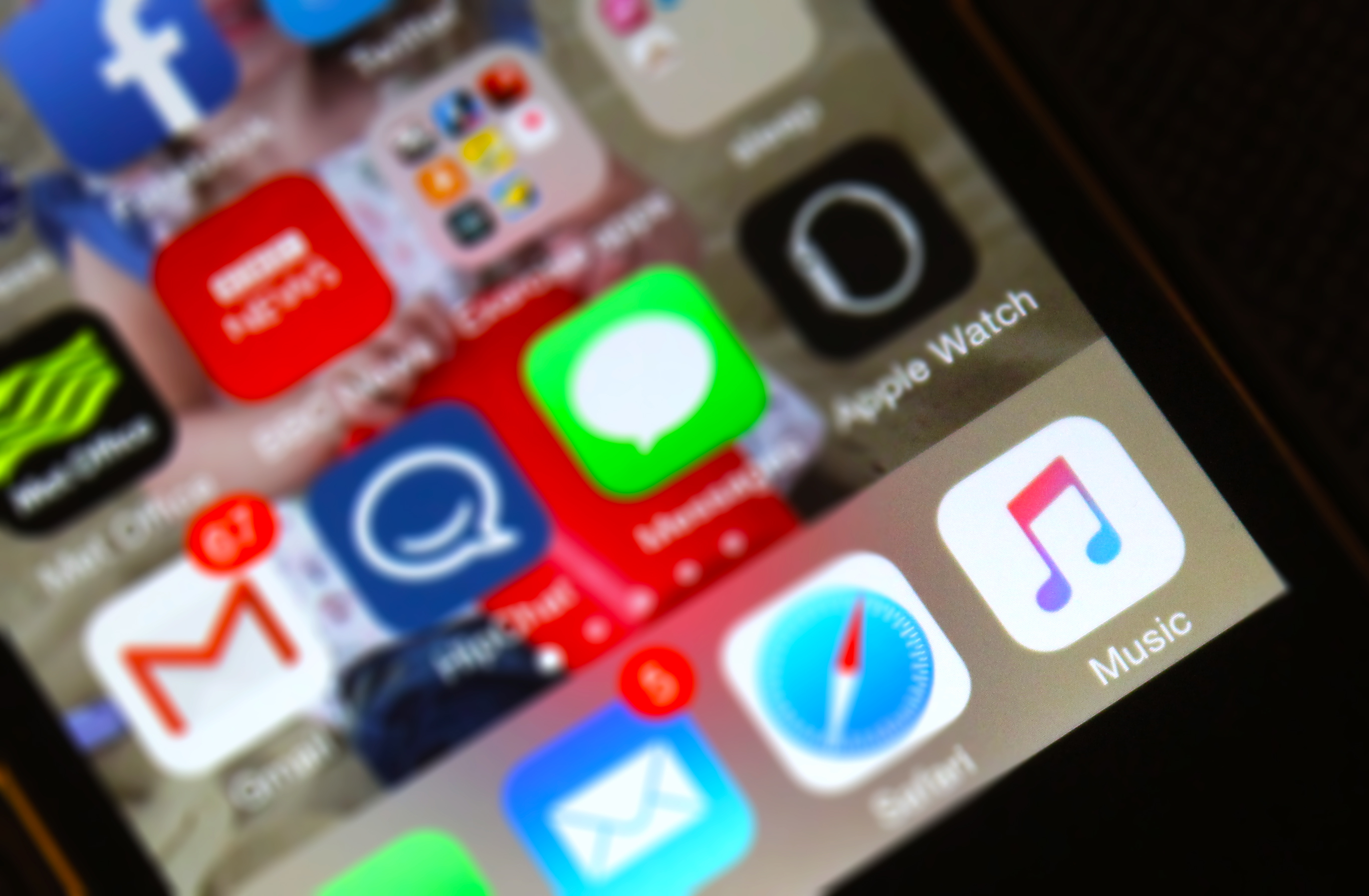
Apple Music comes with a free three-month trial which, according to some people who haven't been paying proper attention, is something Taylor Swift arranged with Apple. Thanks Taylor. Three months is a good amount of time to try out the service, but Apple automatically signs you up for an auto-renewal payment option. So when the trial comes to an end, you’ll start paying for the service, regardless of whether you're still using it or not.
If you’d rather decide for yourself when (or not) to join up as a paying member, rather than being forced into it, it’s easy enough to turn off the auto renewal, although the process is far from obvious.
All you have to do is go into Settings > iTunes & App Store. Tap your Apple ID, select "View Apple ID" and enter your password.
Tap "Manage" under the Subscriptions option, and toggle off "Automatic Renewal" for Apple Music.
If you're on a PC or Mac, you can disable the Apple Music subscription through iTunes. Click the "Account" icon at the top, and select "Account info". Log in to your account, and click "Manage" next to Subscriptions under Settings. Click "Off" next to Automatic Renewal.
You can now enjoy Apple Music without worrying that you’ll be charged for it once the free trial comes to an end.
-

Windows 7 gains significant usage share ahead of Windows 10 launch
Publié: juillet 1, 2015, 12:59pm CEST par Wayne Williams
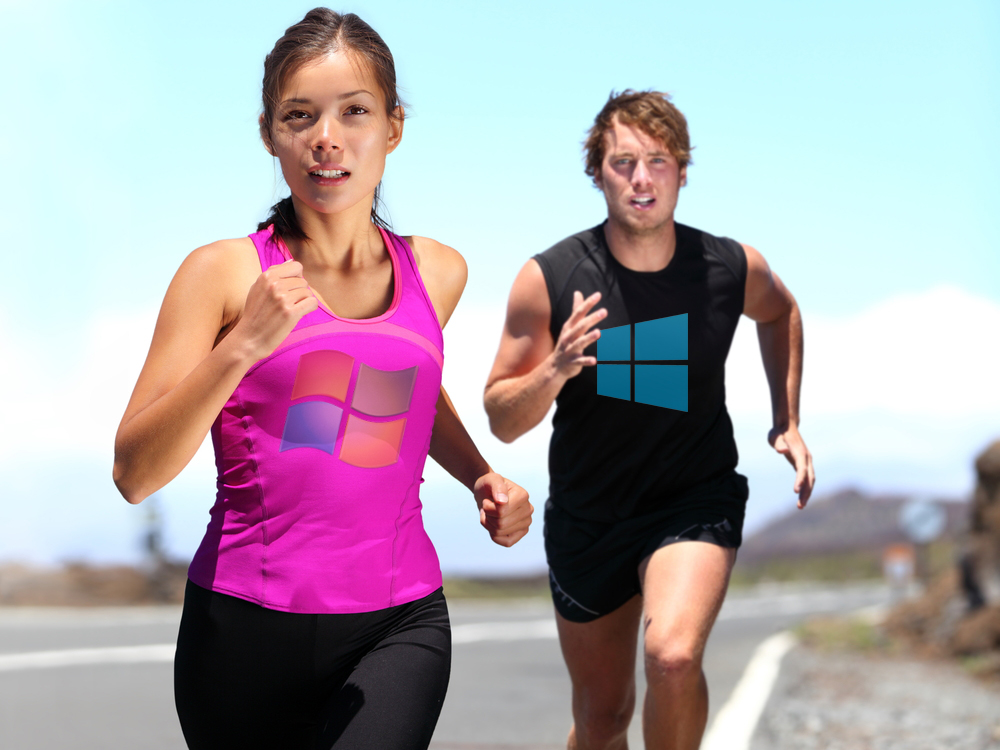
Windows 8.x enjoyed a good month in May. The tiled operating system finally overtook Windows XP for the first time in six months -- its gains coming mostly at the expense of Windows 7. But it was all change again in June according to the latest usage stats from web analytics firm NetMarketShare.
The latest figures show Windows 8.x losing share -- or business as usual you might say -- going from 16.63 percent to 16.02 percent. That’s a drop of 0.61 percentage points. Windows 8.1 actually gained 0.24 percentage points, but Windows 8 lost 0.85 percentage points. Still overall it remains comfortably ahead of XP now, so there's that consolation prize.
The aging -- should be dead by now surely? -- XP dropped 2.62 percentage points, going from 14.60 percent in May to 11.98 percent in June.
The big July gains were notched up by Windows 7, which grew 3.22 percentage points, going from 57.76 percent in May to 60.98 last month.
Overall there was slightly more movement than you might expect this close to Windows 10 launching, although there’s the chance that people are switching over to Windows 7 in advance, so they’re ready to upgrade when the new OS arrives on July 29.
Talking of Windows 10, the Insider Preview now has 0.16 of the desktop market share.
Next month we should see the start of the Windows 10 effect as the OS will be available for a few days at the end of July, and so should be recorded in NetMarketShare’s figures for the month.
Photo credit: Maridav/Shutterstock
-

Twitter says Apple Music is more hit than miss, but there's a lot to hate
Publié: juillet 1, 2015, 9:20am CEST par Wayne Williams

Apple Music launched yesterday and Oxford University's TheySay sentiment analysis company monitored Twitter to work out the overall feeling towards the new service. When the firm monitored the sentiment towards Apple’s WWDC keynote three weeks ago, the announcement of Apple Music received an overall 85 percent approval rating from tweeters, but now that it’s here, the actual service is proving far less popular.
Dr Karo Moilanen, Oxford University professor and co-founder of TheySay, observed: "Compared to the sky-high positive sentiment ratings that Apple products and announcements typically reach on Twitter, this time Apple Music invoked a healthy dose of strong negative sentiment (ca. 24 percent) amongst tweeters".
See Also: Sorry haters, but science proves the Internet really, really loves Apple
According to TheySay, there were 84,845 keyword mentions on Twitter, of which 76 percent were positive, and 24 percent negative.
The positives were:
- Playlists and clever recommendations.
- A curated radio station.
- Smooth interoperability with other Apple services.
- Apple expanding to and conquering new areas.
Taylor Swift featured prominently (and positively) in the social commentary in that many tweeters attributed the three-month free trial offer to her.
The negatives included:
- A truly annoying renewing payment feature ("auto-bill-after-free-trial scam").
- Not original enough compared to Spotify ("just a wannabe Spotify assassin").
- A confusing UX disaster with incomplete and buggy builds on many devices.
- Apple's obsession with U2 -- yet another U2 preloaded.
- Auto-following unwanted artists.
- Limited shared playlists, for example family sharing.
The annoying auto-following feature was behind the massive peaks in anger, dislike, and negative sentiment that stand out in the charts.
Does Spotify have cause to worry about Apple Music? Moilanen says: "The sentiment profiles for Spotify suggest that, contrary to what many tweeters predicted, the providential arrival of Apple Music does not necessarily sound the death knell for Spotify. The ratio of extremely positive vs. negative sentiment was 9 percent negative : 29 percent positive for Apple Music, while Spotify's ratio was 12 percent negative : 32 percent positive which does not indicate huge divergence".
TheySay Ltd is a sentiment analysis company spun out of the University of Oxford in 2011, and its linguistics tool is the most advanced and accurate of its kind, not merely monitoring positive and negative sentiment but also softer human emotions like humor and sarcasm. You can view graphs of the data used in a slideshow below.
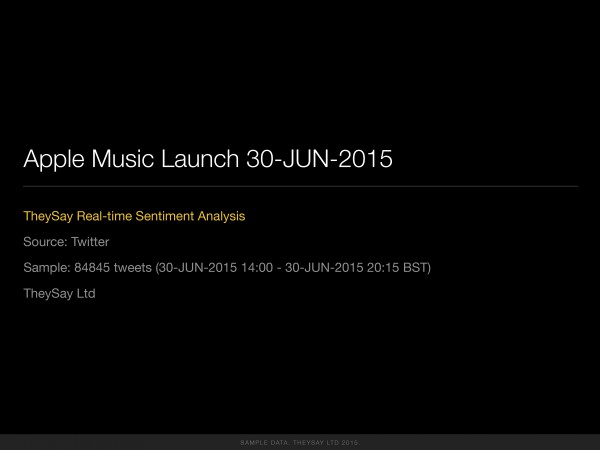
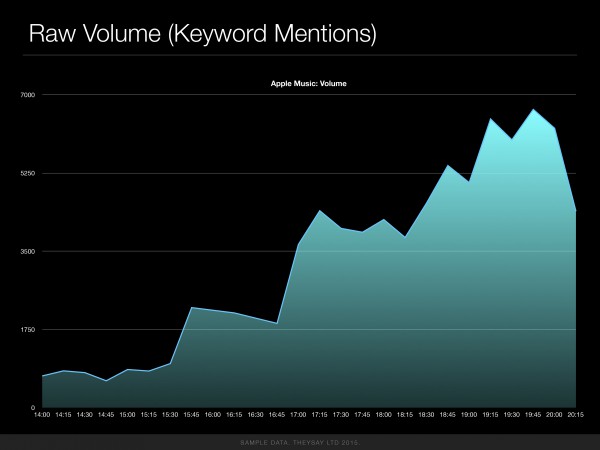
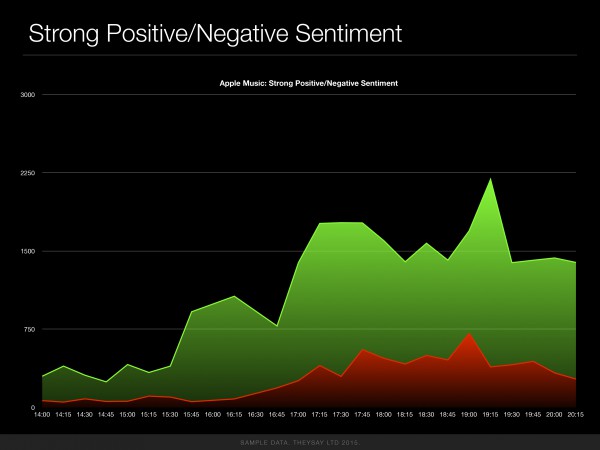
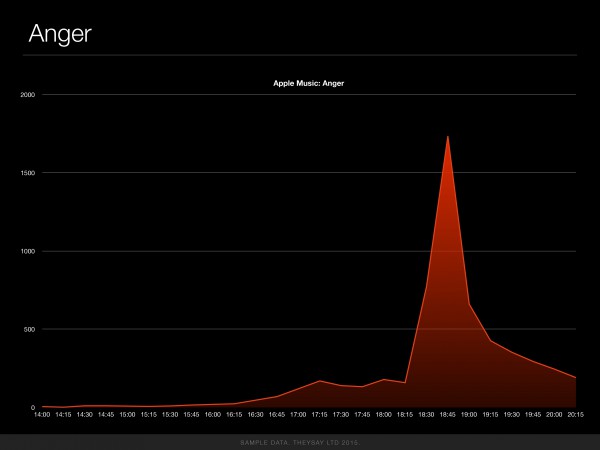
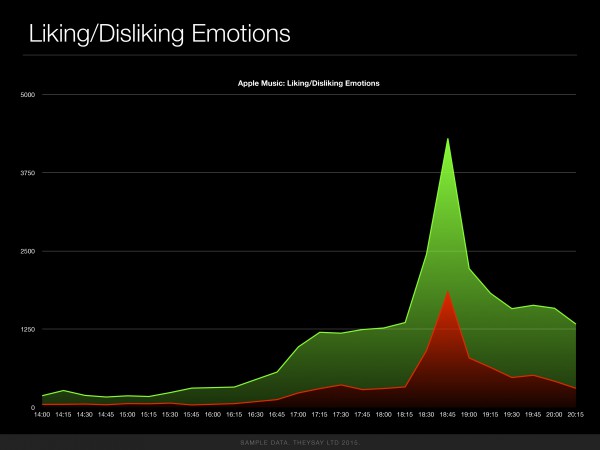
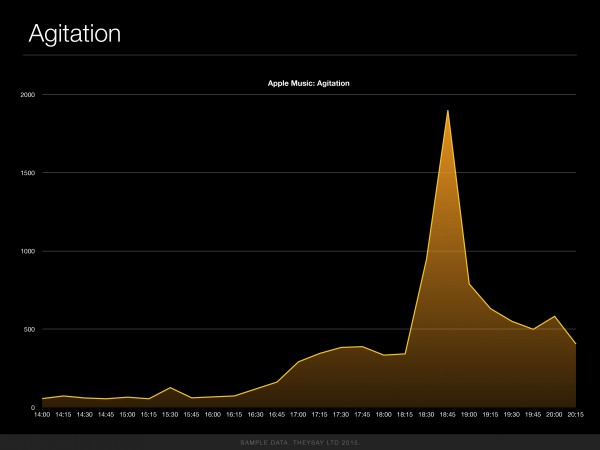
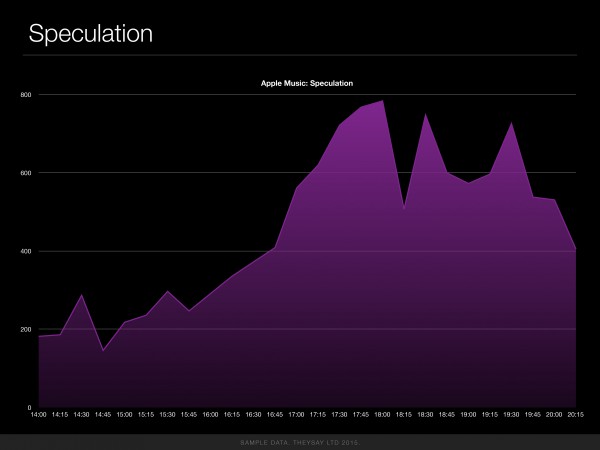
Photo Credit: racorn/Shutterstock
-

OpenDNS to be acquired by Cisco -- will you still use it?
Publié: juin 30, 2015, 3:07pm CEST par Wayne Williams
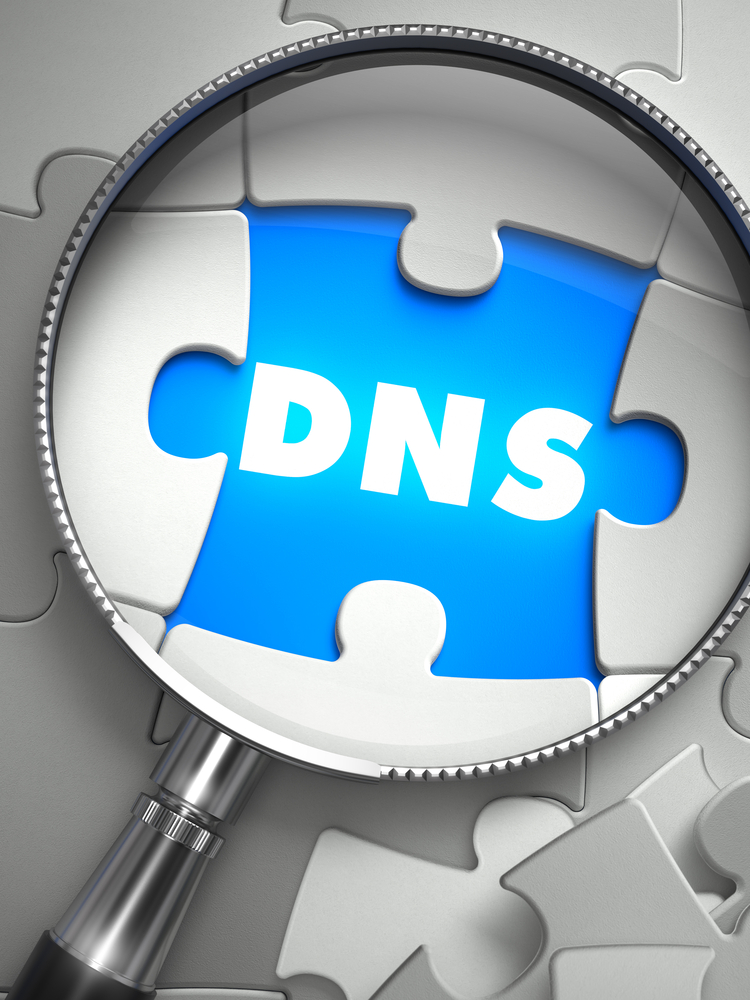
While you can use the DNS servers provided by your Internet Service Provider -- and the majority of web users do -- switching to an alternative DNS can deliver speed and reliability improvements, as well as additional features like phishing protection, parental controls, improved security and more. It might also help you bypass Geoblocked and censored content.
OpenDNS is the go-to DNS service for millions of people around the world. It is, in OpenDNS’s own words, "the world’s most loved and trusted DNS service". Today, however, Cisco announces intent to acquire OpenDNS. Will that change your mind on how you view the service?
"As more people, processes, data and things become connected, opportunities for security breaches and malicious threats grow exponentially when away from secure enterprise networks", says Hilton Romanski, Cisco chief technology and strategy officer. "OpenDNS has a strong team with deep security expertise and key technology that complements Cisco's security vision. Together, we will help customers protect their extended network wherever the user is and regardless of the device".
The OpenDNS team will join the Cisco Security Business Group and the acquisition is expected to close in the first quarter of fiscal 2016.
While many people will choose to use OpenDNS over Google’s own Public DNS -- because, well, how much of your information do you want Google to have? -- Cisco’s ownership may cause some people to think twice.
What’s your view on the news?
Photo Credit: Tashatuvango/Shutterstock
-

8 years ago today the iPhone went on sale and changed everything -- so why didn't I want one?
Publié: juin 29, 2015, 9:08pm CEST par Wayne Williams

On January 9, 2007, Steve Jobs introduced the iPhone at the Macworld Conference and Expo in San Francisco. It was the usual quality presentation from Apple’s sorely missed boss, with some great moments of humor. Our first glimpse of the phone was in fact actually a mock-up of an iPod with a rotary dial in place of the usual click wheel. The audience clapped and hooted. Jobs then went on to show the real device, and it was pretty mind-blowing.
Here was a phone that looked nothing like a phone. It looked nothing like an iPod, for that matter either. It was pretty much all screen, controlled by touch using your finger -- or fingers, thanks to the power of multi-touch -- and was, according to Jobs, powered by OS X. The device could tell if you were holding it portrait or landscape, and knew when you were holding it up to your ear, and so prevent you prematurely ending a call with the side of your face. It came with a 620MHz processor, 128MB of memory and a 2MP camera. It was a magical device. This was the future, being shown right here. A device to be coveted by all. But I didn’t want one.
Perhaps it was because I had a regular dumb Nokia mobile, without a built-in QWERTY keyboard or any great bells and whistles, that I just couldn’t really see the benefit. I was happy enough using predictive text to send lightning fast SMS messages. The idea of a virtual touchscreen keyboard just didn’t appeal. Mind you, at that point my experience of touchscreens was mostly limited to Personal Information Managers controlled with a stylus, and kiosk computers with unresponsive screens, that often did nothing when touched, or moved an on-screen cursor to somewhere only vaguely near where you were frustratingly prodding.
The first iPhone went on sale in the USA on June 29, 2007 -- eight years ago today. Exclusively on AT&T it was initially available in 4GB and 8GB models for $499 and $599 respectively. Would-be purchasers queued right around the block outside the Apple stores. I wasn’t one of them. Partly because I wasn’t interested, and partly because I live in the United Kingdom and the iPhone didn’t come out here until four months later, by which time the 4GB model had been discontinued stateside and the price of the 8GB model cut by a third to $399.
Out of curiosity, and because I was in the market for a new phone, I went into an Apple store in December 2007, and tried out the iPhone for myself. It was light, thin, and surprisingly responsive. I played with it some more and liked it. This was a great piece of kit. A quality phone, crossed with an iPod, that I could use to browse the web comfortably. I remember holding the iPhone in my hand, and being really, really impressed.
So impressed, a few hours later I went home the proud new owner of a BlackBerry 8800.
Next Generation
In February 2008, the 16GB iPhone was announced and four months later Jobs introduced us to the iPhone 3G. This was the iPhone for the 3G network and came with GPS. Available in 8GB and 16GB models, it was thinner, and ran iOS 2.0. Most excitingly of all, users could now download or buy third-party apps from developers like Google through the new App Store. I liked what I saw. I liked it a lot. But I liked my CrackBerry more.
The iPhone 3GS was released on June 19, 2009. This new model came in 8GB, 16GB and 32GB flavors, was faster, thanks to an 833MHz ARM Cortex-A8 processor and 256MB of memory, and had a much better 3MP camera that, unlike its predecessors, could record video (VGA). It offered voice control too.
I wavered, but still preferred my phone. We were in it for the long haul and I couldn’t imagine being without it.
Then the BlackBerry’s charging port broke.
So I finally relented and purchased an all new, shiny iPhone 3GS, and fell instantly and deeply in love with it.
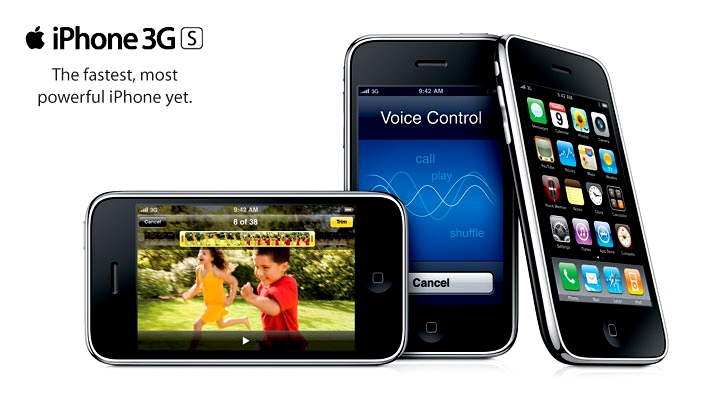
My love affair with the 3GS didn’t last very long though. The iPhone 4 was released on June 24, 2010, bringing with it the Retina Display, a super-speedy 1Ghz Apple A4 processor (making it twice as fast as my new phone, and four times as fast as the original model) and 512MB of memory. It was slimmer, had a glass body, and a new and improved 5MP camera capable of recording 720p HD video. It had a front camera too, so users could FaceTime (Apple lingo for video chatting). It also had a new feature called "Death Grip", which caused calls to drop when you held the phone in a certain way. But Jobs had me at "Retina Display" so I upgraded immediately.
Getting Siri-ous
On October 4, 2011, with everyone hoping for the iPhone 5, the 4S was announced by new Apple boss Tim Cook. This had various improvements, including 1080p video recording, but the most notable new inclusion was Siri -- a magical personal assistant who could read messages aloud and send dictated replies, tell you the weather, convert measurements, schedule events, and more -- if you were lucky. The UK got Siri’s dumb brother (also called Siri) who was rubbish, couldn’t understand regional accents, and had no idea about local businesses. Thankfully he soon got smarter (and later transitioned into a woman).
There didn’t really seem enough in this new version to justify upgrading so I decided to stick with my iPhone 4 for a little longer. That little longer turned out to be a month. Juggling my phone while walking I dropped it and the screen cracked. It was like fate. I had to get a new phone and there was only one possible choice for me.
So I bought a Samsung Galaxy S III.
I had no regrets about no longer having an iPhone, and quickly became an Android convert, but secretly, deep down, I was still love in love with iOS. I still had an iPod touch and an iPad to ease the cravings.
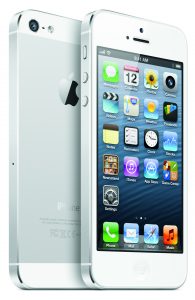
The iPhone 5, announced in September 2012, didn’t appeal enough to get me to switch. Sure it had a larger screen than its predecessor -- a massive 4-inches -- but my Galaxy S III had a 4.8 inch screen and I didn’t want to lose that real estate. But aside from LTE connectivity, a better camera, and the change from glass to aluminum on the back, there really wasn’t much about the new iPhone to interest me. The Apple Maps fiasco made me even surer this was a phone to be ignored.
I looked forward to upgrading to a Samsung S4.
But then in 2013 Apple unveiled the iPhone 5s, with its stylish new colors -- space gray, silver and gold -- and new 64-bit A7 processor which was twice as fast as the iPhone 5, according to Apple. This device also introduced a new M7 co-processor, F2.2 aperture camera lens, Touch ID -- the long rumored fingerprint reader -- and the all new iOS 7. There was also another new iPhone, the plastic/polycarbonate bodied 5c in a choice of bright colors, but I didn’t care for that. I was already in love with the 5s, and upgraded to it at the first opportunity.
Last year, Apple gave the world the iPhone 6 and 6 Plus. Both devices are much bigger, offer Apple Pay (a new way for iPhone users to pay for their morning coffee!) and sport the usual raft of minor improvements. I wasn’t convinced it was worth the upgrade, however, so chose to stick with my 5s for a while longer.
Will I be upgrading to the 6s (or whatever name Apple gives it)? It’s hard to say for certain, until the phone is actually announced at least, but I expect the answer will be a resounding yes! I do still own Android phones, and I love, love, love CyanogenMod (my Samsung Galaxy S III still lives on because of it). I also covet my wife’s HTC (M8) more than I expected to. But I cannot see myself ever not owning an iPhone again.
With the iPhone Apple changed phones forever, and brought us so many good things -- multi-touch, video calling, proper web browsing, built-in personal assistant, and of course apps. It's fair to say, without the iPhone today’s mobile phones would be very, very different.
Eight years on and the iPhone is sleeker, faster and more powerful, but it’s still essentially the same device. The first iPhone was a revolution. Every subsequent update has been an evolution, and that -- for me -- is exactly how it should be.
What’s your recollection of the iPhone? Did you buy the first model, come to it later, or have you always avoided it, and if so, why? Comments below please.
-

Raspberry Pi Foundation introduces a new print version of its official magazine
Publié: juin 29, 2015, 4:10pm CEST par Wayne Williams
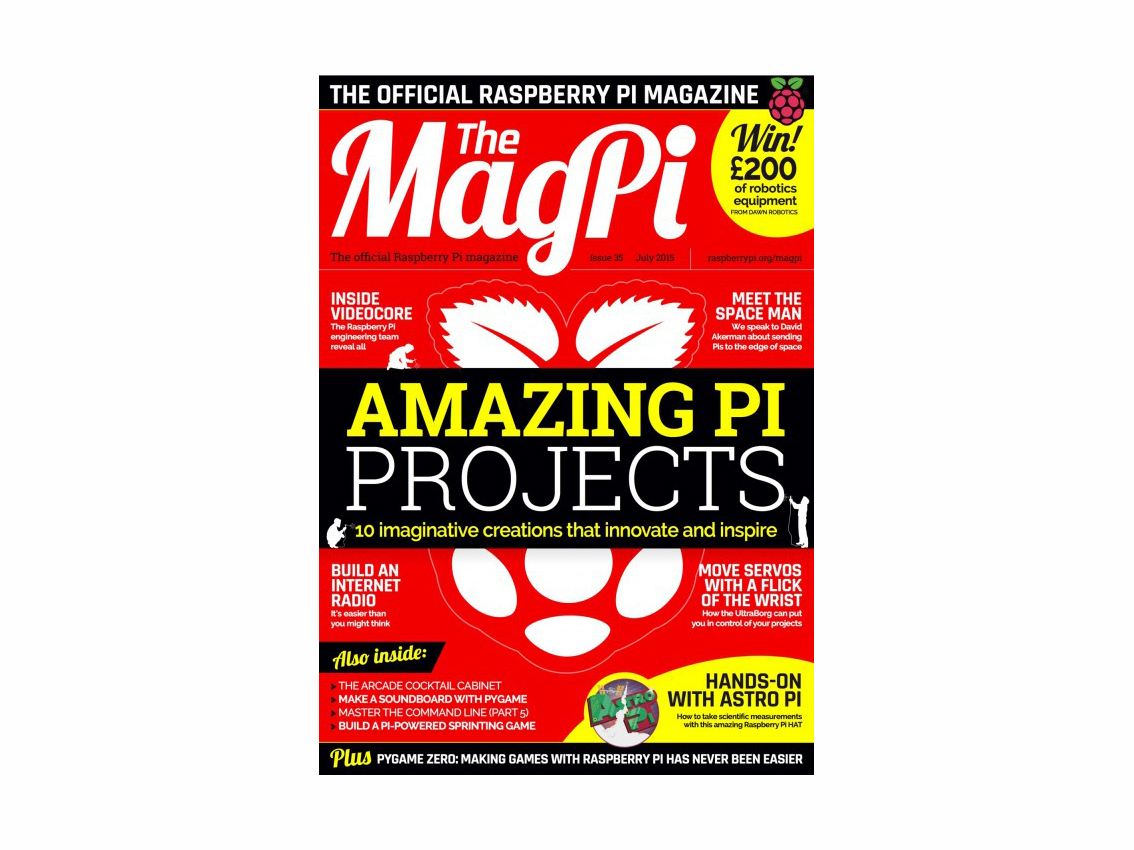
If you’re a big fan of the Raspberry Pi, as we are, there’s a good chance you might have downloaded The MagPi digital magazine before. This is an official magazine packed with builds, hacks and step-by-step tutorials.
It’s always been very popular (partly due to being free of course), with over 100,000 downloads for issue 31 alone. And now the Raspberry Pi Foundation is going to start printing copies of a bigger and better version of the mag and distributing it in the US and UK, starting from 30 July.
Russell Barnes, editor says: "The MagPi magazine has already proved itself to be one of the most successful new technology magazine launches of the year and I couldn’t be happier. It’s not every day that a digital magazine goes to print, but that’s exactly what we’re doing next issue. The Official Raspberry Pi magazine will be available throughout the UK and America, with plans to branch out into other territories and languages as soon as possible".
The 100 page magazine will include the usual mix of builds and guides, as well as features and reviews. It will cost £5.99 in the UK, pricing for other territories will vary (which is the Foundation’s way of saying "not confirmed yet". It will be available in all the major UK newsagents, and you’ll also be able to buy it in the Swag Shop.
Don’t worry if you think this will be the beginning of the end for the free download version, because it won’t. The MagPi will continue to be free to download as a PDF.
Barnes says: "While we’ve been getting hundreds of requests for the magazine in print over the last six months, The MagPi has always been available as a Creative Commons-licensed PDF, and that’s the way it’s going to stay! You can download every issue of The MagPi from raspberrypi.org/magpi and you’ll soon be able to join a mailing list to get the issue delivered to your inbox every issue".
-

Microsoft can't stop confusing the hell out of Windows 10 users
Publié: juin 23, 2015, 2:54pm CEST par Wayne Williams
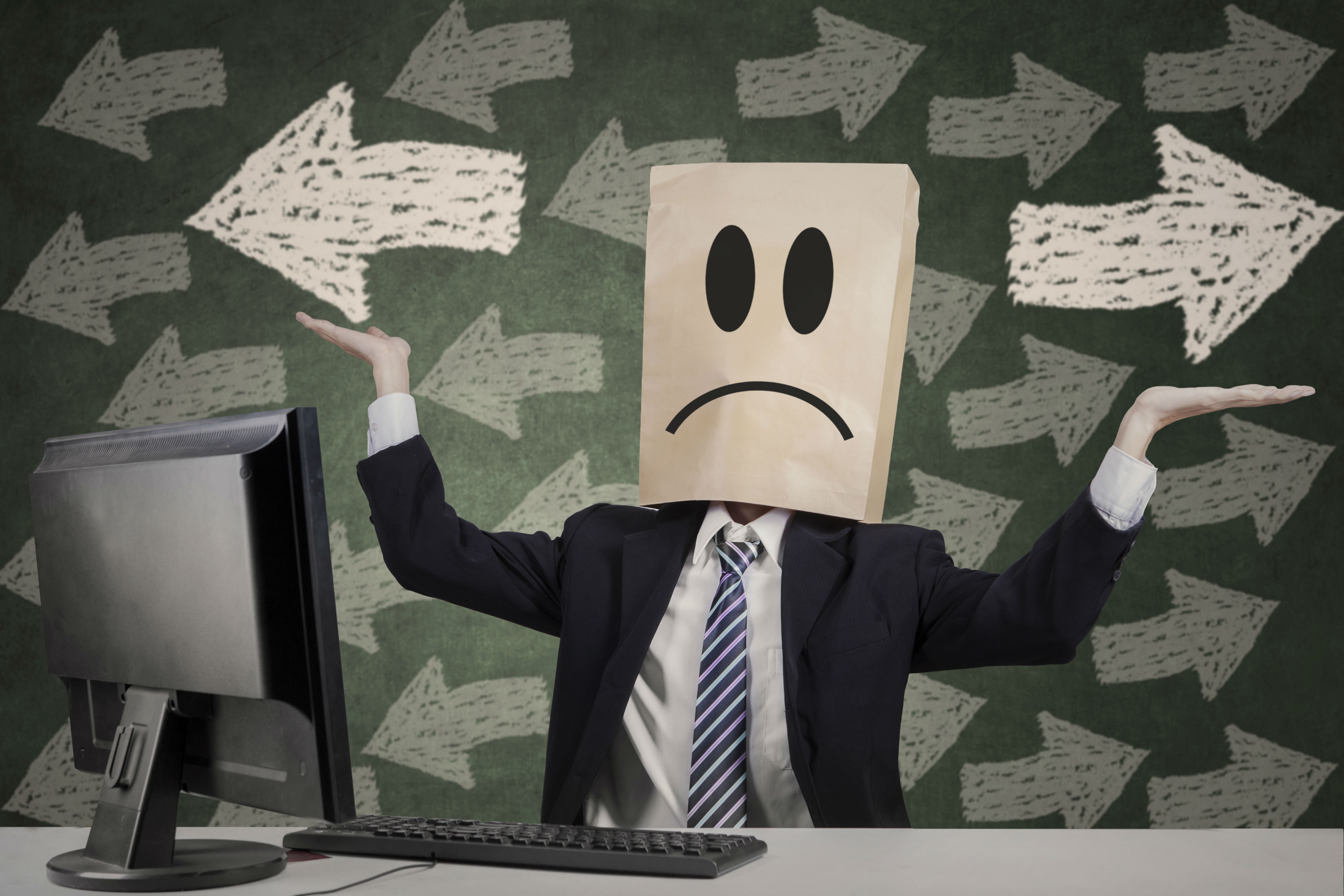
Over the weekend Microsoft had several stabs at explaining who will get Windows 10 for free come July 29. Previously we’d been told users would need a valid Windows 7 or 8.1 license, but three days ago Microsoft said anyone running a Windows Insider build of the new OS would get the final release too -- no license required. Great news for anyone on XP or Vista.
Then Microsoft backtracked a bit, suggesting a license was needed. But Windows Insider chief Gabriel Aul, chipping in on Twitter, seemed to contradict that by suggesting Insiders would get it free, so again no license required. Finally, Microsoft clarified things, but even then it did so in a slightly muddled way. And this isn’t even the first time Microsoft has confused would-be users of its future operating system.
When it first announced Windows 10 last September Microsoft didn’t explain the reason for the version leap from 8.x -- where’s 9? -- and after declaring the new OS would be a "service", Windows boss-man Terry Myerson said that the OS would be free to Windows 7 and Windows 8 users during its first year of availability. That led to instant confusion. Would using it not be free after the first year? Would Windows 10 be a subscription service, like Office 365?
In a blog post Myerson clarified that this "is more than a one-time upgrade: once a Windows device is upgraded to Windows 10, we will continue to keep it current for the supported lifetime of the device -- at no additional charge". But even then, people who hadn’t seen the blog post remained confused as to whether or not the OS would cost money down the track. The fact that Microsoft didn’t talk about future pricing -- because at that point it hadn’t decided how much to charge -- made things worse.
It also doesn’t help that when Microsoft talks about Windows 10 being free it includes lines like "supported lifetime of the device" (I’m installing Windows 10 on a self-built PC, so what’s its supported lifetime?), "Windows as a service" and "qualified Windows devices". Even in the recent clarification post there are lines like "Windows Insider Program is intended to be installed on Genuine Windows devices". Seriously, what is that supposed to mean? Okay, it’s supposed to mean devices running a licensed copy of the operating system, but it sounds like it will only run on Windows devices which are genuine. Which of course makes no sense.
It just seems crazy that a giant company like Microsoft, which has been in business for 40 years, is so unable to clearly communicate its plans to its customers without confusing the hell out of everyone in the process. Perhaps there's a department in the company that's in charge of taking plain English and muddling it with asterisks and slightly meaningless wording.
It was better when Microsoft sold Windows, at least you knew where you stood then. You didn’t have to panic over whether your PC was genuine, qualified and within its supported lifetime, or make the decision as to whether to be a customer or an Insider. You just bought a copy, installed it and used it.
Image Credit: Creativa Images / Shutterstock
-

Microsoft Band is more accurate than Apple Watch at measuring your heart rate
Publié: juin 22, 2015, 9:18pm CEST par Wayne Williams
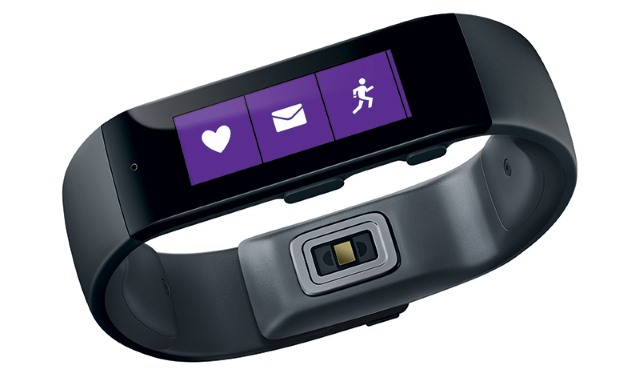
Fitness bands and smartwatches that monitor your activity are notoriously inaccurate. Wear a bunch of them at the same time and they’ll all return entirely different results. And we’re not talking about slight discrepancies either -- the results can differ by several thousand steps. The idea is the trackers provide you with a general ballpark figure, rather than a precise one, so you can see how your activity varies on a daily basis, and take steps -- hah! -- to improve on it.
As a result, comparing the results from two or more fitness trackers isn’t usually very helpful -- each device will measure activity in its own way, and who is to say what’s right or wrong? However, more advanced wearables -- Microsoft Band and Apple Watch, for example -- measure your heart rate, and it’s much easier to check how accurate they are. All you need to do is compare the results they produce with the figures from a reliable source.
This is exactly what Rachel Metz did in an article for MIT Technology Review. For several days she wore an Apple Watch and a Microsoft Band while biking to and from work, and then compared the results to those from the Polar H7 Bluetooth chest strap she wore at the same time. A chest strap will always be better at measuring your heart rate than a wrist device, and the Polar H7 is known to be highly accurate. While the results varied from day to day, the Microsoft Band proved to be more reliable. Metz says:
The Band’s average heart-rate measurements were consistently closer to the results of the Polar chest strap -- sometimes within a beat or two per minute, but they could be as many as 13 beats off. The Apple Watch, meanwhile, gave readings as many as 77 beats per minute different from the Polar device.
The full story is available to read here.
Tests like the ones performed by Metz aren’t especially scientific, and do highlight the difficultly in accurately measuring vitals (whether it’s heartbeats or footsteps) from your wrist. That said, it seems from her findings that the Band is more accurate than the Watch when it comes to monitoring your heart rate.
-

Sond Audio Bookshelf Speakers: Quality Bluetooth speakers for the home [Review]
Publié: juin 19, 2015, 2:14pm CEST par Wayne Williams
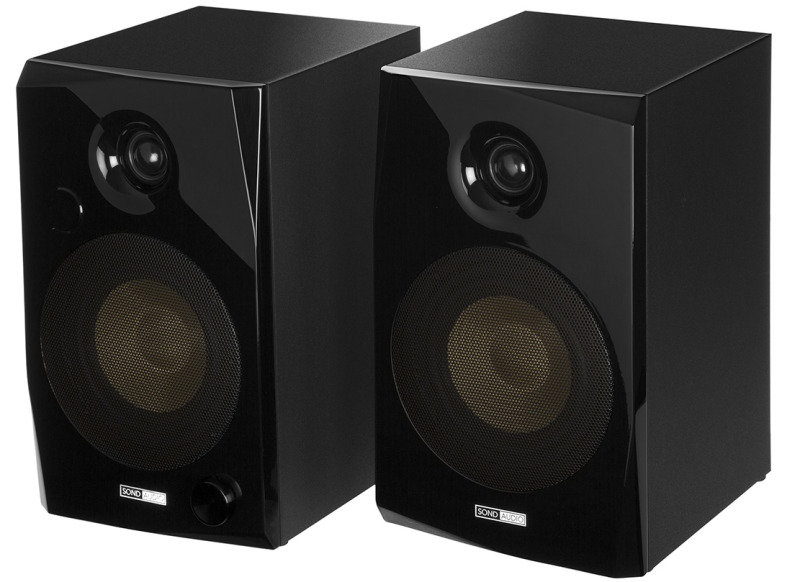
We review -- and get asked to review -- a lot of Bluetooth speakers. While the ones we look at might be from different makers, and of varying quality, they all share one thing in common. They’re small, and portable. Not so the Sond Audio Active Bookshelf Speakers.
The twin speakers are large, and designed to sit in the one place. This could be a bookshelf, provided you have one that’s deep enough to accommodate them, or the floor. If you enjoy listening to music, and the sound quality delivered by portable speakers doesn’t cut it for you, then the 180w these speakers offer could well be what you’re looking for.
Sond Audio is Ebuyer’s own audio brand, and my first exposure to one of its products, the portable NFC speaker, left me impressed, and so my expectations for the Bookshelf Speakers were high.
As I mentioned previously, these are sizable -- 180x215x295 mm -- and they deliver a meaty 180w of sound. They’re proper audio speakers. Despite the suggestion they can be placed on a bookshelf, it’s recommended to leave at least a 20-25 cm gap at the rear, so that will only work if you have shelves that sit away from the wall. It’s also recommended that you "break in" the speakers by listening to music casually for 24-48 hours before using them for something like a party.
The right-hand (active) speaker has all the inputs and controls. On the front there’s a remote receive window which is red when in standby, flashing red when mute, blue when on, white when connected via Bluetooth, and blinking white when Bluetooth is disconnected. There’s also a separate volume control.
On the rear is a mass of inputs. In addition to being able to connect to the speakers via Bluetooth, there’s a USB Audio In for connecting to a PC, Aux In (RCA stereo plugs for connecting a CD/DVD player), Line In (for a phone/MP3 player etc.), Line Out, Subwoofer output (for if you have a powered subwoofer you want to connect), voltage select switch (AC115V/230 V 60-50Hz) and an AC Input connection.
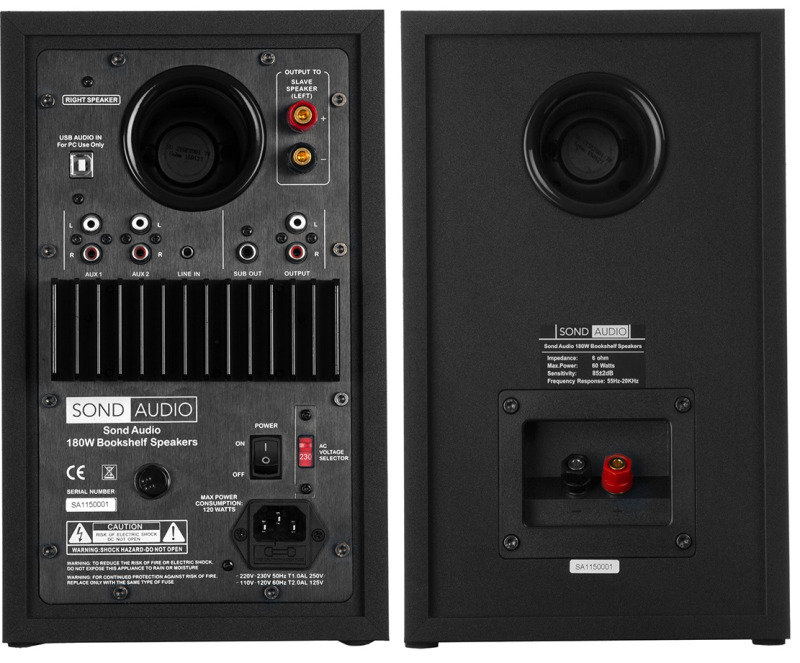
The speakers also come with a tiny twelve function remote control you can use to select your input, control volume and play/pause and track backwards and forwards in Bluetooth mode. While the speakers are black and stylish, the remote feels a little cheap and nasty with a white front and tiny buttons. It works and does the job as intended, but if you’re using the speakers via Bluetooth, then you’ll probably just use your phone or other audio source to manage playback.
Setting everything up is just a matter of connecting the active and passive speakers together using the supplied audio cable, plugging in the power and turning the speakers on. You can then connect to the speakers using your preferred method. The supplied manual provides drawings and detailed information to help you here. You also get a USB A-to-B cable and RCA to 3.5mm minijack cable included in the box.
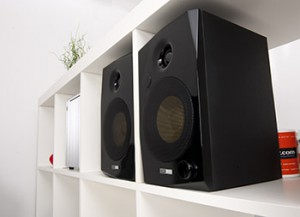 I’ve been using the speakers for some weeks now -- so I’m well past the settling-in stage -- and have tested them with an eclectic range of music, from classical to modern club anthems. The quality of the sound is excellent, with a meaty bass and crisply rendered vocals. At high levels the low frequencies remain suitably taut. You can really crank up the volume without worrying about distortion, and the sound fills the room.
I’ve been using the speakers for some weeks now -- so I’m well past the settling-in stage -- and have tested them with an eclectic range of music, from classical to modern club anthems. The quality of the sound is excellent, with a meaty bass and crisply rendered vocals. At high levels the low frequencies remain suitably taut. You can really crank up the volume without worrying about distortion, and the sound fills the room.Some of the songs on my iPhone are, it has to be said, of dubious sound quality, and they are shown up as such when played through these speakers. It's similarly easy to spot the high quality tracks in my collection.
The Sond Audio Active Bookshelf Speakers are easy to set up, and offer great quality sound. They retail for a very reasonable £149.99, including free delivery, and can be purchased directly from Ebuyer.
Technical specs
- Speaker type / crossover -- 2.0 active / 2-way
- Tweeter / midrange / woofer -- 2x1" / 2x5"
- Normal imp / sensitivity -- 6ohm / 85+2db
- Nominal / max power -- 2x30W / 2x60W
- Frequency resp -- 55-20KHz
- Amplifier type / AC power -- Class AB/AC 110V̴ 120V-60Hz or 220V̴ 240V-50Hz
- Input connection -- Line RCA/3.5,, jack / USB Audio / Bluetooth
- Output power (RMS) -- 2x30W / 2x60W
- Cabinet / surface disposal -- MDF/GH+PVC finish
- Cabinet (WxDxH)mm -- 180x215x295mm
-

How to easily switch from Android to Windows Phone
Publié: juin 19, 2015, 11:30am CEST par Wayne Williams
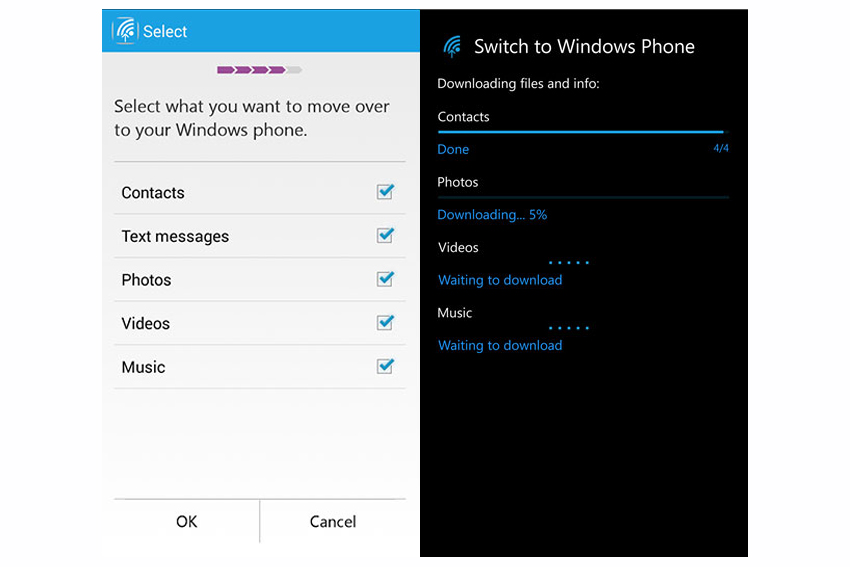
Once people have made the decision to go with a particular mobile operating system, they tend to stick with it. Moving all of your data from one device to another can be a bit of a pain, and it’s made even harder if you’re also switching operating systems, and have to find and re-buy all of your favorite apps.
If you’re thinking of making the move from Android to Windows Phone -- perhaps in anticipation of Windows 10 Mobile later in the year -- the process doesn’t have to be stressful. Here’s what you need to do.
In an effort to woo Android users Microsoft has released a free app called Switch to Windows Phone which simplifies the process of copying over contacts, photos, and any other media items. The app was recently updated and while it’s a preview version, it works well.
You need to install a version of the app on both your old Android device and your new Windows Phone. Get the apps from Google Play and Windows Phone Store.
Launch the Android app and choose the transfer method you wish to use. There are two options -- via Wi-Fi or using OneDrive as an intermediate. The latter is ideal if you haven’t yet configured your Windows Phone. You can store all of your personal data in Microsoft’s cloud service and transfer it over whenever you’re ready.
The Wi-Fi option creates a virtual wireless connection between the two devices and lets you copy over everything you require.
Once you’re done you’ll need to install any missing apps. While there is a large app gap on Windows Phone, you'll find the tiled mobile OS has most of the major apps you use, and there are decent third-party alternatives to fill in for any missing official apps.
-

Nest refreshes its entire product line -- major redesigns, updates, a new cam and more
Publié: juin 17, 2015, 9:33pm CEST par Wayne Williams
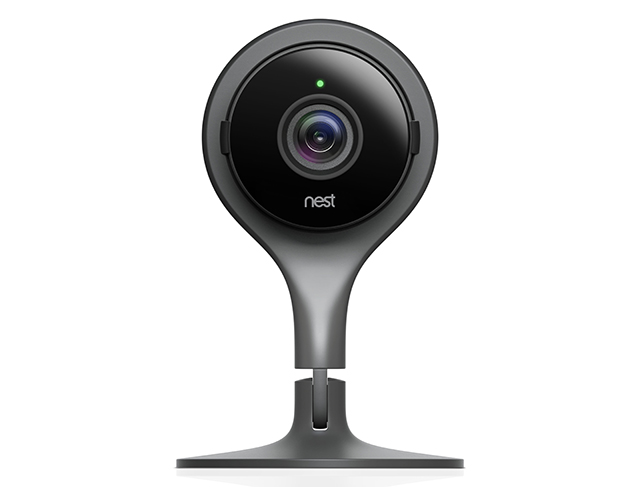
Nest has been quiet for quite some time, but today it breaks that silence with multiple product announcements.
Alongside the launch of a new Nest Cam, there’s a completely redesigned second-gen Nest Protect smoke and carbon monoxide alarm that is apparently actually good at detecting fires, and a software update for the Nest Learning Thermostat that adds new features. There’s a new app too.
Nest Cam is basically an improved, and redesigned version of Dropcam (an acquisition Nest made last year) that offers higher quality (1080p) live streaming to your phone or computer. It delivers improved night vision, and a new Nest Aware with Video History feature -- pay a monthly fee and you can explore everything that happened in your home over the past 10 or 30 days (depending on your subscription choice).
Nest Cam users will also be able to stream content directly to YouTube Live.
The camera is available for purchase today with a suggested retail price of $199. It will begin shipping later this month.

Nest Protect, the company’s intelligent smoke detector, had some issues in the past, but has been entirely redesigned to make it better at detecting actual fires and avoiding false alarms. A new split-spectrum sensor uses two wavelengths of light to look for both fast- and slow-burning fires.
It’s been redesigned too, and is 11 percent smaller and sits flusher against the ceiling or wall. Nest has made it easier to install too.
The alarm can now be silenced using the new app, and the device comes with an (up to) 10 year product lifetime.
Nest Protect is available for purchase today for a suggested retail price of $99. It will begin shipping next month.
Nest Learning Thermostat gets a software update that gives it better integration with Nest Protect and safety temperature alerts. If your home gets too hot or cold you can get a notification on your phone -- so no more burst pipes in winter (in theory anyway). You can now control up to 20 thermostats in the app.
The software update will begin rolling out today and will take up to two weeks to reach everyone.
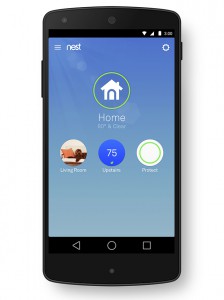 Nest app 5.0 for phones, tablets and computers has a new look and new features and for the first time lets you control all of your Nest products, including Nest Cam, from the one place. It’s available now in Google Play and Apple App Store.
Nest app 5.0 for phones, tablets and computers has a new look and new features and for the first time lets you control all of your Nest products, including Nest Cam, from the one place. It’s available now in Google Play and Apple App Store."At Nest, we always wanted to build more than a thermostat," said Tony Fadell, Nest chief executive officer. "Our vision was to create a thoughtful home -- a home that takes care of itself and the people in it. Five years later, all the pieces are in place. We’ve built a portfolio of best-in-class products that each stand on their own while doing more together. More than 9,000 developer partners are using the Works with Nest developer program to help seamlessly integrate everything from washers and dryers to cars with our thermostat, smoke alarm and camera. And we’re working with energy and insurance partners to bring more value to our shared customers. Nest products are used in 190+ countries, across multiple platforms, and available wherever people shop. The result? Energy saved, lives spared, and countless memories recorded and shared".
Nest Cam and the second generation Nest Protect are available for purchase now at www.nest.com, as well as from a range of retail partners, including Amazon, Best Buy, Google Play, The Home Depot, Lowe’s and Target in the US. The Nest Aware with Video History subscription is available exclusively at www.nest.com or through the Nest app.
Nest Protect, Nest Cam and the Nest Aware with Video History subscription will also be available in the UK, France, Ireland, Netherlands Belgium, and Canada this summer. Let’s hope the European customer service has greatly improved from the dreadful shambles I experienced last year.
-

Samsung's new 4TB portable hard drives are the thinnest and lightest in the world
Publié: juin 17, 2015, 2:43pm CEST par Wayne Williams
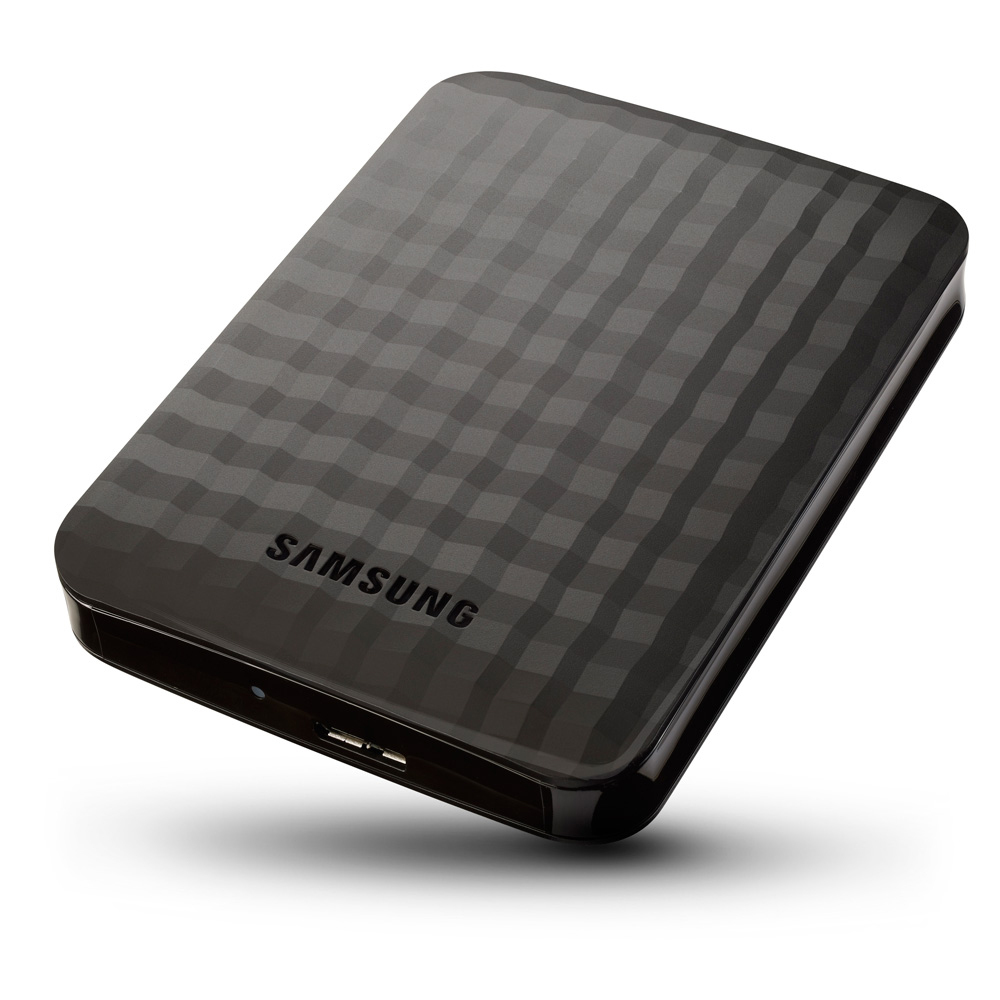
Storing data on a portable hard drive means you’ll have access to it wherever you happen to be, and can connect the device to any computer. Of course you don’t want to be lugging around a heavy drive -- the lighter the better -- but neither do you want to be compromising on capacity.
Samsung HDD, a division of Seagate Technology, today announces two new 4TB external hard drives -- the M3 Portable and the P3 Portable -- which it says are the first 4TB USB-powered single drive solutions to come in 2.5in enclosures.
The two drives are 0.78 inches thin and weigh just 8.3 ounces. They offer USB 3.0 speeds and don’t require any external power.
"Previously only attainable in desktop or bulky multi-drive internal designs, we can now achieve a 4TB capacity in a compact drive thanks to the latest Samsung HDD technology," said Dave Klenske, director of product line management, Samsung HDD. "By going to a single drive solution, we can power the drive through just a USB connection while fitting it into a case that is only a 1/10 of an inch thicker than our 2TB drive. They are the perfect lightweight drives for notebook computer owners who need to access media collections too large to fit on traditional internal storage options".
Doug DeHaan, general manager, Samsung HDD division further explains, "The Spinpoint M10P 4TB hard drive enables this innovation with the highest aerial density, 800GB per disk in the world. With consumer demand for external storage capacity continuing to grow, the P3 and M3 4TB answer the increasing appetite for storage and are positioned to lead future capacity needs from the mobile market".
The 4TB M3 Portable and P3 Portable hard drives will be available in late June through authorized distributors. No word on pricing as of yet, but you can find out more at [samsunghdd.seagate.com].
Will you be buying one of these new drives? Tell me in the comments.

-

Keep your Raspberry Pi 2 safe with the official new case
Publié: juin 16, 2015, 4:28pm CEST par Wayne Williams
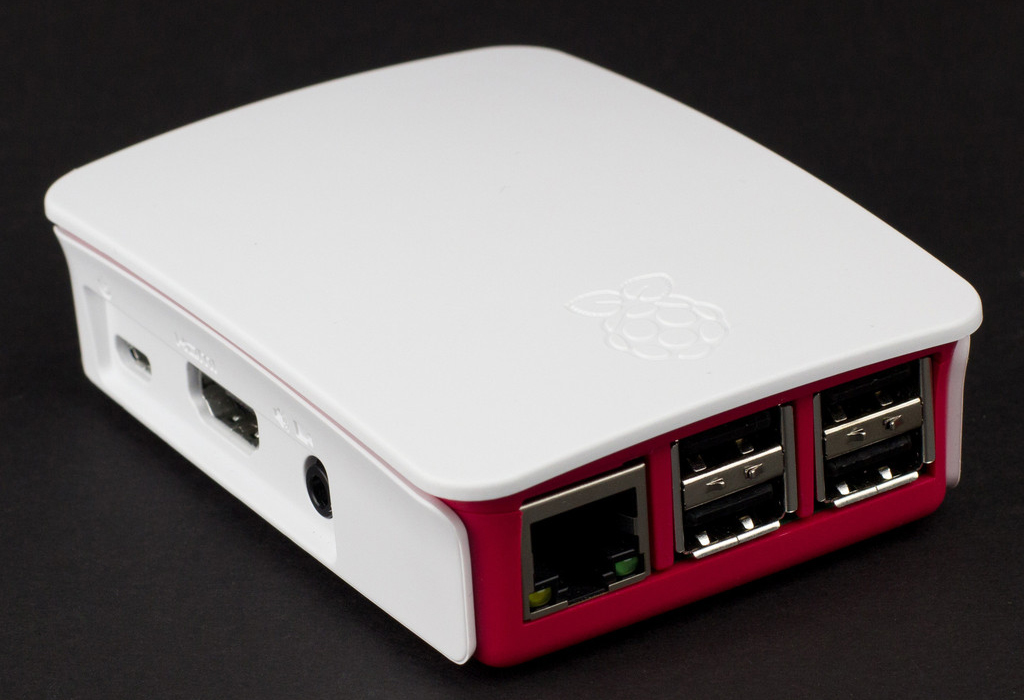
Although there are plenty of enclosures available to buy for the Raspberry Pi, all of them come from third parties. There’s never been an official case for the Pi, until now.
The brains at the Raspberry Pi Foundation first talked about creating an enclosure for the wildly popular device some two and a half years ago, and it’s finally come to fruition. If you’re worried about damaging your Pi, or just want to give it a stylish look, then the Official Raspberry Pi Case is for you, and as you’d expect, it’s incredibly cheap.
Designed for the Raspberry Pi 2, it keeps all of the primary ports (including microSD) clear and has a removable sideplate so you can get to the GPIO pins, and an optional clip-on lid you can remove if using a HAT. The power and activity lights remain visible, and anti-slip feet ensure the case won't fall off your desk if knocked.
If you're interested in reading about how the case was designed and made, the full story is here.
Pi owners in the UK can pick one up for £6 from the Swag Store, element14, or RS Electronics. If you’re in the US, try Newark or Allied. It may take a day or two for them to appear in some places. No word on US prices at the moment.
-

LastPass hacked, email addresses, password reminders and more compromised
Publié: juin 15, 2015, 9:50pm CEST par Wayne Williams

A lot of people trust LastPass to keep their passwords safe, which is why news that the company has been hacked and its user data compromised is seriously worrying.
LastPass discovered and blocked some suspicious activity on its network last Friday and immediately launched an investigation. Today it reports its findings, and they're very concerning indeed.
The bad news is email addresses, password reminders, server per user salts, and authentication hashes were compromised in the attack. The good news, however, is your passwords should be safe. LastPass found no evidence that encrypted user vault data was taken in the attack, nor that any LastPass user accounts were accessed.
Joe Siegrist, CEO and co-founder LastPass says: "We are confident that our encryption measures are sufficient to protect the vast majority of users. LastPass strengthens the authentication hash with a random salt and 100,000 rounds of server-side PBKDF2-SHA256, in addition to the rounds performed client-side. This additional strengthening makes it difficult to attack the stolen hashes with any significant speed".
So the stolen hashes can be attacked, just not quickly.
As a precaution LastPass is urging users to change their master password immediately, and also change it on any other sites where it might have been reused (if you're foolish enough to do that sort of thing). The company is also now requiring users who log in from a new device or IP address to verify their account by email -- unless they have multifactor authentication enabled.
Are you a LastPass user? Worried about this news?
Image Credit: wk1003mike/Shutterstock
-

Watch Sony's PlayStation E3 press event live here
Publié: juin 15, 2015, 9:12pm CEST par Wayne Williams
Microsoft’s press event has finished, and revealed a lot of great gaming news, including that the Xbox One will soon be able to play selected Xbox 360 games. Huge news.
Next up it’s the turn of Sony. The company will have lots of gaming news of its own, and it won’t only be content relating to the PlayStation 4. Expect to find out more about Morpheus, the company’s VR headset that’s set to rival Oculus Rift.
See also: Oculus, Morpheus, and more: anticipating VR at E3 2015
Sony's press conference starts today at 6PM PDT/2AM BST and you can watch it here once the stream goes live.
Are you excited by what Sony might be revealing? Do you think the PS4 will continue to comfortably outsell the Xbox One as it has over the past year, or do you think Microsoft is owning E3 this year?
-

Watch Microsoft's E3 keynote live here
Publié: juin 15, 2015, 4:20pm CEST par Wayne Williams
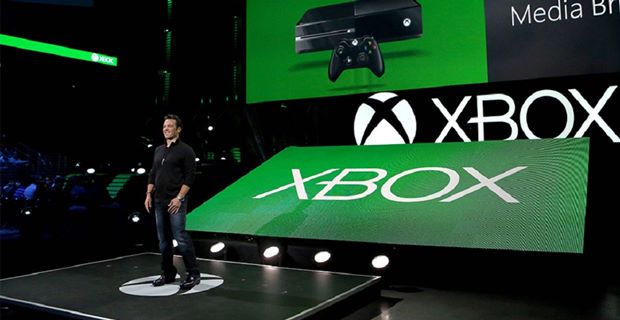
The annual E3 video game conference gets underway properly from tomorrow, but Microsoft’s press keynote takes place today, and you’ll be able to tune into it right here as it happens.
The company’s focus will, naturally, be on the Xbox One and Windows 10, but there will also be plenty of games announcements too -- Microsoft says we can expect to see "the greatest games lineup in Xbox history" this year.
The tech giant will also be talking about its plans for gaming on PCs and tablets, as well as gaming in "new, immersive ways", by which it presumably means HoloLens and VR devices like the Oculus Rift.
The press conference starts today at 9:30 PDT/17.30 BST and you can watch it live here thanks to Twitch which will be streaming the event.
If you have an interest in Microsoft and gaming, then you definitely won't want to miss this.
-

Windows 10 Insider Preview Build 10130 now available to download on the Slow ring
Publié: juin 12, 2015, 8:21pm CEST par Wayne Williams

Microsoft released Windows 10 Insider Preview Build 10130 to the Fast ring two weeks ago, but it came with a couple of major bugs that meant it wasn’t suitable for all. Last week Microsoft pushed out ISOs of the build, for people who were having trouble updating to the new version through Windows Update, but it still wasn’t deemed stable enough for Slow ring Insiders.
Well, the good news is if you’re on the Slow ring you can finally update Windows 10 to Build 10130, as Microsoft is pushing the update out to everyone now. And your patience is rewarded with news that the update comes with some useful fixes.
You can read about the features and improvements in the original Build 10130 here.
Microsoft reports the following fixes that will be immediately available to Slow ring updaters:
- KB3070365: Fixed an issue where if you click on the icons on the Taskbar (Start, Cortana, Network, Battery, and Action Center) in this build, the expected fly-out might not open.
- KB3069069: Fixed the issue where after upgrading to this build audio playback is lost in some hardware configurations.
- Note: Some sound cards may fail to operate in multichannel mode. The workaround to the problem is to set the default audio format to stereo.
- KB3070677: Fixed an issue where if you’re running the 'Core' edition of the Windows 10 Insider Preview and Windows Update might not detect new builds available.
- KB3070982: This dynamic update prevents an issue that can result in the loss of audio when the upgrade is completed in some hardware configurations.
Some of the fixes will be applied as Dynamic Updates during installation, others will come once everything is set up. If you're on the Fast ring and already have Build 10130 installed, you should already have the latest updates. Go to Settings > Windows Update > Check for updates.
See Also: How to customize Windows 10 Insider Preview Build 10130
Surface 3 users will still need to avoid this build as there’s a problem that stops it installing.
Finally, if you find the build doesn’t update properly on your PC, you can also upgrade directly using the ISO files.
-

Microsoft's Surface Pro 3 comfortably beats Apple's iPad Air 2 in speed tests
Publié: juin 12, 2015, 2:38pm CEST par Wayne Williams
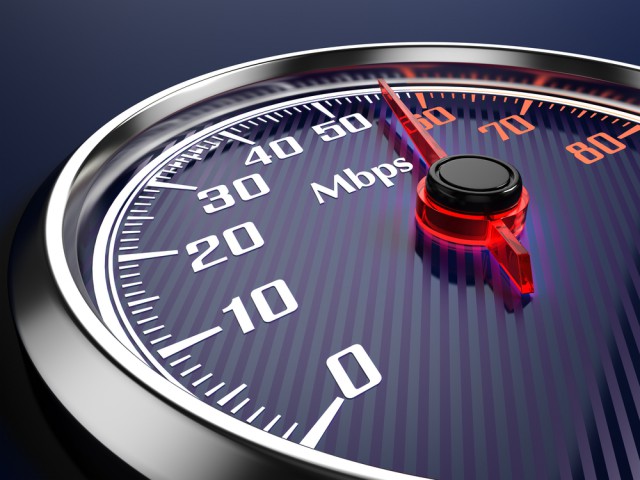
UK consumer watchdog Which? tested a range of popular tablets and discovered that when it comes to speed, there’s only one champion, and that’s Microsoft’s Surface Pro 3.
It turns out it wasn’t only Microsoft’s slate that bested Apple’s tablets in the speed stakes. The iPad mini 3, which sells for £319 in the UK, was beaten by the Tesco Hudl 2 which costs just £99.
Which tested the tablets using the Geekbench software, and Microsoft Surface Pro 3 managed the highest score of 5,069, comfortably beating the Apple iPad Air 2 on 4,046 and the Google Nexus 9 on 3,537. Don’t bother getting your calculators out, that means the Surface Pro 3 is 20 percent faster than the iPad Air 2.
"Our tablet speed test is a great indication of how fast tablets can run when downloading apps or using multiple functions at once," said Which? editor Richard Headland.
"Nowadays we expect everything in a swipe or a click of the button, so understanding how quickly a tablet is able to process information is important to buyers".
The scores for the ten tested tablets are as follows:
- Microsoft Surface Pro 3 128GB i5: 5069
- Apple iPad Air 2: 4046
- Google Nexus 9: 3537
- Amazon Kindle Fire HDX 8.9 2014: 3060
- Apple iPad Air 32GB wi-fi: 2687
- Samsung Galaxy Tab Pro 10.1: 2650
- Samsung Galaxy Tab S 10.5: 2594
- Asus MEMO Pad 7 ME572C: 2351
- Tesco Hudl 2: 2084
- Apple iPad mini 3: 1790
Naturally there will be some (or maybe a lot) of disagreement when it comes to these findings, so sound off in the comments below.
Photo Credit: Sashkin/Shutterstock
-

Apple Music should fear Spotify, not the other way around
Publié: juin 12, 2015, 1:52pm CEST par Wayne Williams

Apple’s recently announced streaming music service is being viewed by many as a potential Spotify killer. Spotify might have more than 20 million paying subscribers and over 75 million active users, but Apple is a force that cannot be ignored, and being late to the party means nothing.
So should Spotify be concerned about the forthcoming battle with Apple? Unquestionably. Although, if new research is to be believed, it’s Apple that should be worrying the most.
Chegg, the online education resource for high school and college students, recently conducted a survey to get student views on streaming music services, and learned that the likes of Spotify and Pandora can rest easy (for now at least).
Millennials and students are the key audience Apple needs to win over and that won’t be easy. According to Chegg’s research, 42 percent of students currently use Spotify most frequently out of all of the streaming services, with Pandora coming in a close second at 38 percent. 43 percent of students say if they were only allowed to use one paid music streaming service -- including Apple Music -- they would choose Spotify.
In fact, only 9 percent of students said they’d be willing to subscribe to Apple’s paid streaming music service, although 38 percent were prepared to keep an open mind and try it. Based on what they know, 8 percent said they would be likely to switch to Apple Music, while 52 percent said definitely not.
16 percent said they thought Apple Music seemed cool, but Spotify got a 70 percent rating.
What would it take to make them consider switching? Over 50 percent of students said that Apple Music would need to offer a lower price, a larger library, or the ability to download songs.
Photo Credit: CREATISTA/Shutterstock
-

Watch the unveiling of the Oculus Rift consumer headset here
Publié: juin 11, 2015, 4:28pm CEST par Wayne Williams

Oculus will be one of several names demoing virtual reality products at E3 next week, but ahead of the big games show the company is going to be taking the wraps off of the consumer model of its VR headset later today.
The Oculus Rift consumer model isn’t actually due to go on sale until early next year, but today’s special event should give us a good idea of what to expect from the device, more concrete release details, and hopefully the all-important price.
In addition to that, the company will be talking about the future of virtual reality, gaming, and more.
The live stream starts at 10am PDT/6PM BST and you can view it on Oculus.com and Twitch.tv, and also live here. The event is expected to last around an hour.
Are you excited about Oculus Rift?
-

'Fappening' suspect accessed up to 572 celebrity iCloud accounts
Publié: juin 10, 2015, 7:13pm CEST par Wayne Williams

Last year a large number of young female celebrities had their personal -- and in the majority of cases, nude and sexually explicit -- photos and videos leaked on to the internet, in what became known as The Fappening. Most of the photos were accessed through iCloud, leading Apple to take steps to strengthen its cloud service’s security.
According to a recently-unsealed search warrant and affidavit the leaks are believed to be the work of one man who managed to access as many as 572 iCloud accounts.
During investigations, US law enforcement agencies traced the attacks to the IP address of Emilio Herrera in Chicago.
Yes, despite being able to break into a large number of iCloud accounts it seems Emilio was unable to adequately disguise his IP address, which was reportedly used to access the compromised accounts 3,263 times between 31 May 2013 and 31 August 2014. It is believed that while he managed to gain access to as many as 572 iCloud accounts, he may have targeted around 1,987 accounts in total.
As Forbes points out, it seems incredible that one IP address attempting to access nearly 2,000 iCloud accounts didn’t set alarm bells ringing at Apple.
Herrera had his home searched and his computer equipment confiscated in October, and the case is ongoing.
High profile female celebrities targeted in the attack included Jennifer Lawrence, Kate Upton, Kim Kardashian, Vanessa Hudgens, Mary-Kate Olsen, Kelly Brook, and Hayden Panettiere. The affidavit makes for interesting reading as it reveals how certain celebrates discovered they were victims of the leaks. They aren’t named, but you can probably work out who they are from the initials.
Photo Credit: Lighthunter/Shutterstock
-

Security firm Kaspersky Lab hacked by a 'nation state'
Publié: juin 10, 2015, 5:35pm CEST par Wayne Williams
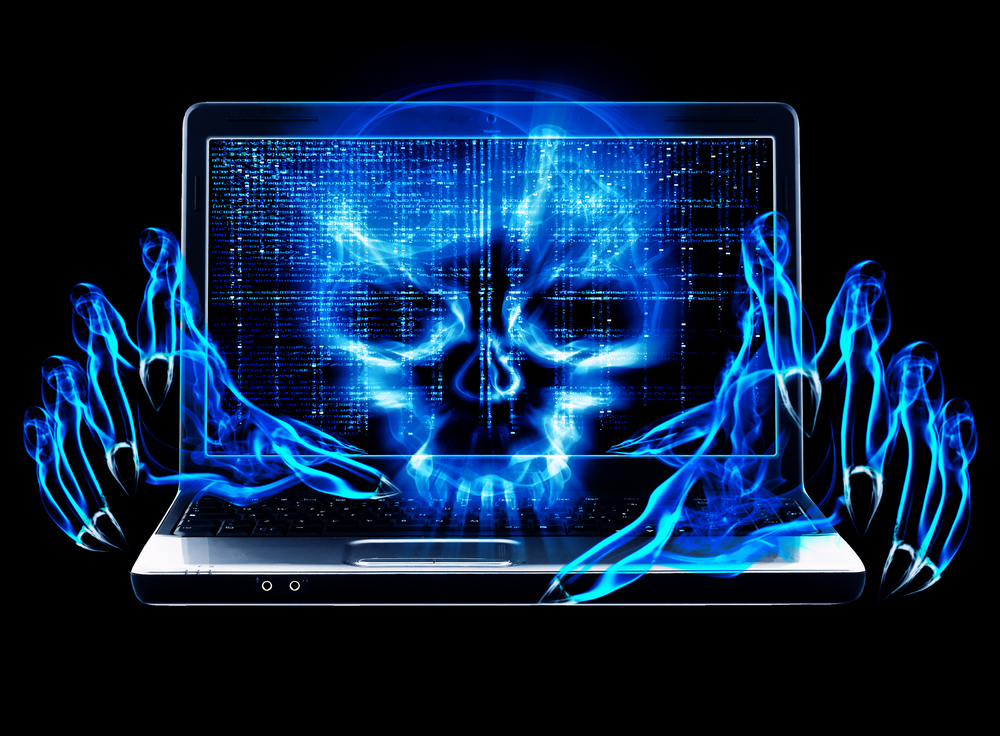
Security firms are supposed to keep us safe from threats like malware and hacker attacks, but occasionally they fall foul of the bad guys too. A year ago Avast was hacked, and some 400,000 user details were stolen. Two years ago, AVG and Avira had their websites taken over by pro-Palestinian hackers.
The latest security firm to be hacked is Russian anti-virus software maker Kaspersky Lab.
In a post on the company's blog, Chairman and CEO Eugene Kaspersky says the attack on its own internal networks was "complex, stealthy, [and] it exploited several zero-day vulnerabilities". The firm is also very confident that there was a "nation state" behind it all.
Antivirus firms like to name threats, and Kaspersky Lab has labeled this particular attack Duqu 2.0, after the Duqu Trojan which was used in attacks on Iran, India, France and Ukraine back in 2011.
Kaspersky Lab believes the purpose of the hack was to steal the company’s secrets, and says the attack was "a generation ahead of anything we’d seen earlier -- it uses a number of tricks that make it really difficult to detect and neutralize. It looks like the people behind Duqu 2.0 were fully confident it would be impossible to have their clandestine activity exposed".
The firm views the hack as being mostly a good thing because despite its sophistication, Kaspersky Lab was able to detect it, and now has everything it needs to protect customers against future attacks. No products or services were compromised in the hack, and customers remain perfectly safe.
Duqu 2.0 wasn’t only used to spy on Kaspersky Lab but, according to the firm, also used to spy "on several prominent targets, including participants in the international negotiations on Iran’s nuclear program and in the 70th anniversary event of the liberation of Auschwitz".
If, as Kaspersky Lab believes, a nation state is behind the attack, there’s obviously one important unanswered question -- which one? The company isn’t saying. Whether it's because it doesn't know, or simply doesn't want to get involved in that kind of finger-pointing is a matter for debate. However, Eugene Kaspersky did have this to say:
Governments attacking IT security companies is simply outrageous. We’re supposed to be on the same side as responsible nations, sharing the common goal of a safe and secure cyberworld. We share our knowledge to fight cybercrime and help investigations become more effective. There are many things we do together to make this cyberworld a better place. But now we see some members of this 'community' paying no respect to laws, professional ethics or common sense.
People living in glass houses shouldn’t throw stones.
To me, it’s another clear signal we need globally-accepted rules of the game to curb digital espionage and prevent cyberwarfare. If various murky groups -- often government-linked -- treat the Internet as a Wild West with no rules and run amok with impunity, it will put the sustainable global progress of information technologies at serious risk. So I’m once again calling on all responsible governments to come together and agree on such rules, and to fight against cybercrime and malware, not sponsor and promote it.
Image Credit: lolloj/Shutterstock
-

How to get the Windows 10 upgrade notification to appear in Windows 7 or 8.x
Publié: juin 10, 2015, 1:19pm CEST par Wayne Williams

If you’re running Windows 7 or 8.x you should by now see a small Windows 10 icon in the system tray. Click this and you can reserve your free Windows 10 upgrade in advance of the operating system’s launch on July 29.
Once you’ve reserved the upgrade, Windows 10 will download as soon as available and you’ll be able to install it at your convenience. However, for some reason this icon isn’t appearing on all systems. It wasn’t on mine for example. If you want to summon the upgrade icon, this is what you’ll need to do.
The first thing to try is make sure Windows Update is set to automatically install all updates on your PC and that your system is fully up to date. That alone might be enough to get the icon to appear. You need to have patch KB3035583 installed.
If that doesn’t do the trick, and it didn’t for me, then try running this batch script which is available on Dropbox (as reported by the always excellent Ghacks).
Run the batch file in admin mode, read the disclaimer and then hit any key. The menu presents you with five choices. Step one is check to make sure update KB3035583 is installed. If it is you can return to the main menu and choose one of three methods to get the notification to appear. There are two quick methods and a longer one. The first one worked instantly for me. I ran it and the icon appeared immediately.
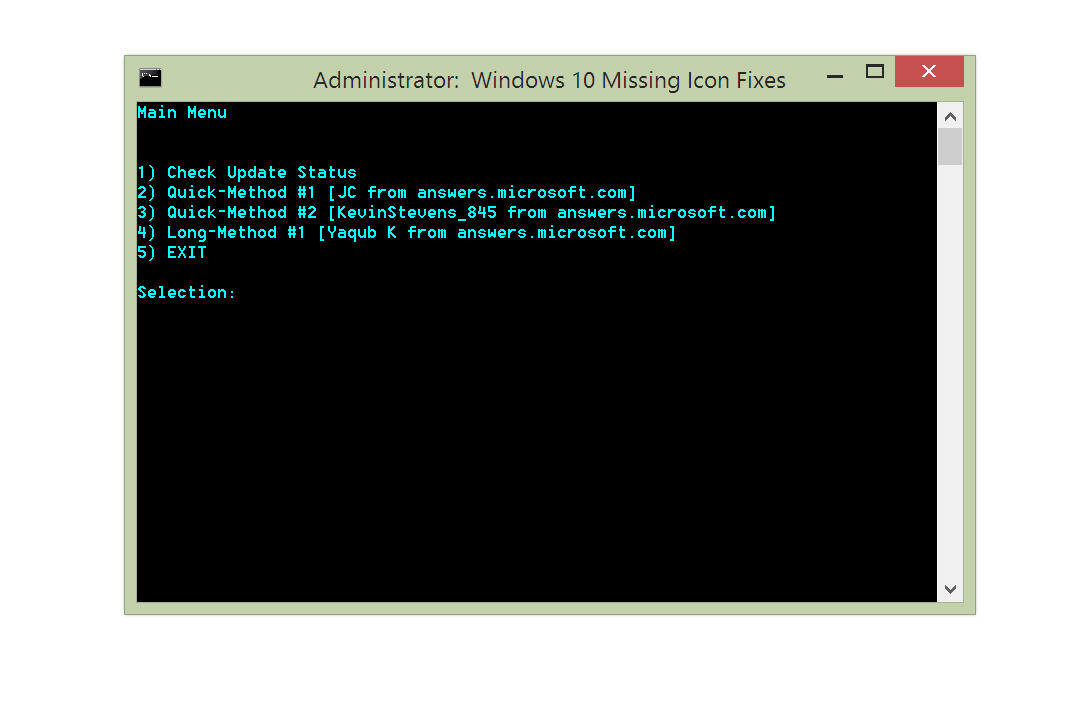
When the problem is solved, exit the batch script and click on the new upgrade icon and you will be able to reserve your free copy of Windows 10.
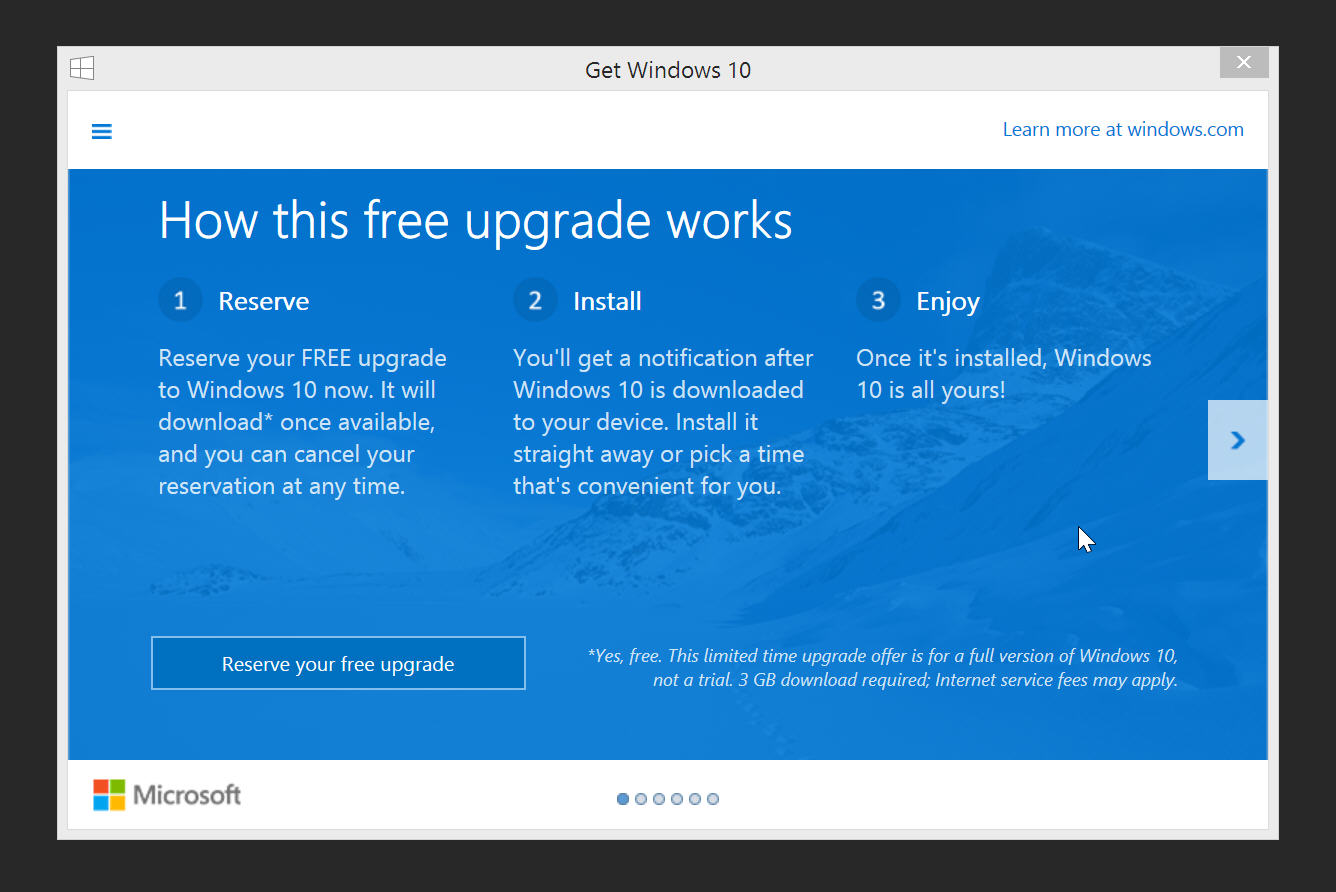
Should you wish to remove the icon, you can follow the instructions here.
-

How to remove the Windows 10 upgrade notification from Windows 7 and 8.x
Publié: juin 10, 2015, 12:13pm CEST par Wayne Williams

If you’re certain you don’t want to upgrade to Windows 10, or you want to do so at your own pace without being nagged into it, the upgrade notification that appears in Windows 7 and 8.x can be viewed as an unwanted annoyance.
There are plenty of reasons why you might not want to upgrade to Windows 10 as soon as it becomes available -- you might be more than happy with your existing OS, or you may wish to wait until Windows 10 has been out for a while and all of the big issues have been patched. After all, you have a year to upgrade for free. If you want to remove the upgrade notification, there’s a simple tool for the job.
I Don't Want Windows 10 works by removing the Windows system update responsible for the notification.
Run it on Windows 7 or 8 and the tool will remove patch KB3035583, thus killing the update offer in the system tray. This of course is something you can do manually easily enough, but I Don't Want Windows 10 simplifies the process down to a couple of mouse clicks.
Agree to the terms and conditions of the unofficial patch, accept the Windows prompt and the update will be removed. You may need to reboot your PC for the changes to take effect.
The developer has provided the source code for the program should you wish to check it out.
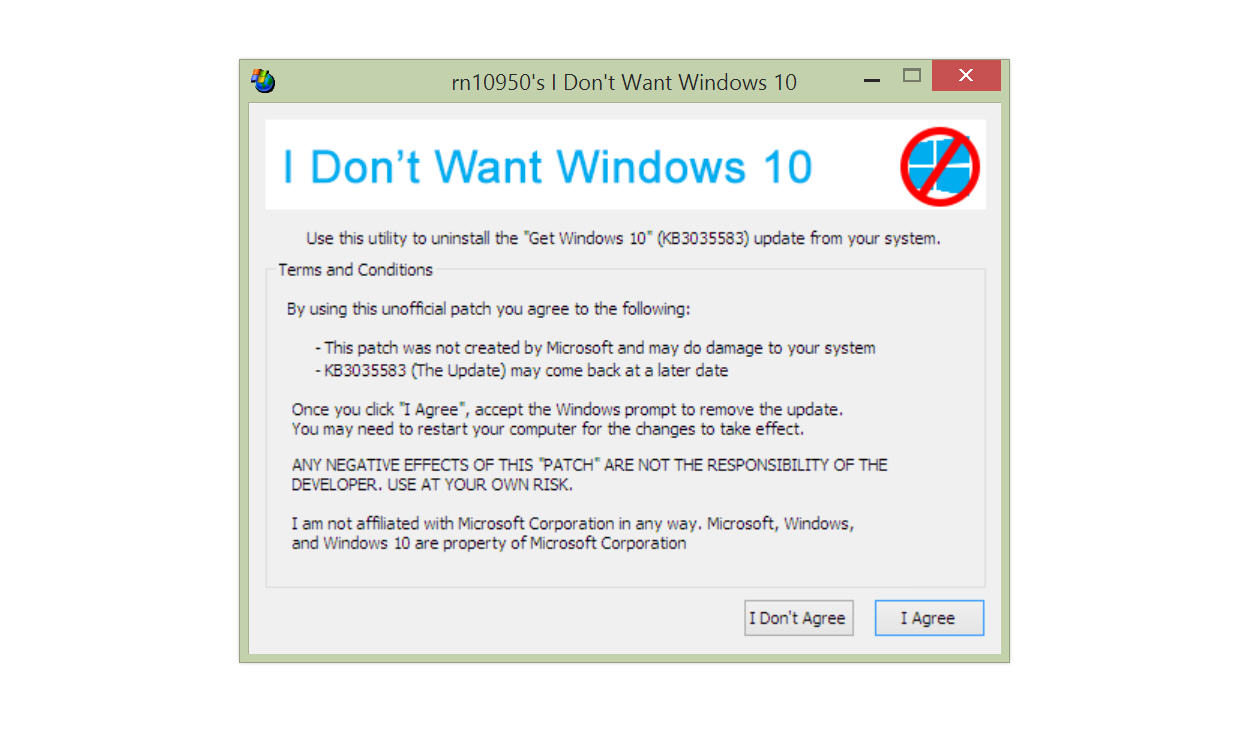
-

Windows 10 will keep you safe from malware
Publié: juin 10, 2015, 9:39am CEST par Wayne Williams
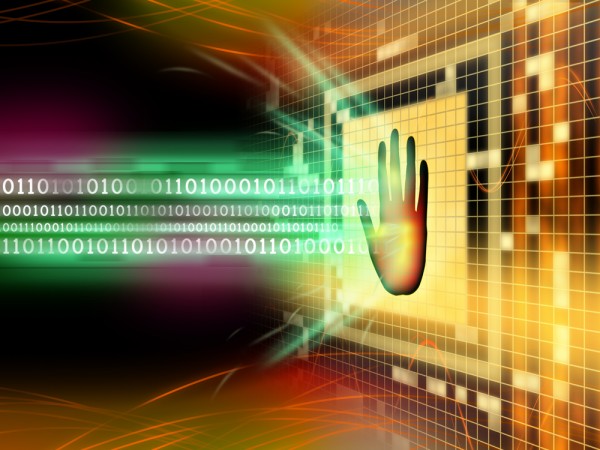
Microsoft’s past attempts at protecting Windows users from malware have been patchy at best. However, with Windows 10 the company is offering a new way to help protect its customers from dynamic script-based malware and other forms of cyberattack.
AMSI (Antimalware Scan Interface) is an interface standard that allows applications and services to integrate with any existing antimalware product on your PC. Those apps can call the new Windows AMSI APIs at any time to scan for malware.
Microsoft explains, "Malicious software that uses obfuscation and evasion techniques on Windows' built-in scripting hosts will automatically be inspected at a much deeper level than ever before, providing additional levels of protection". Apps can use AMSI to scan files, memory or streams, perform content source URL/IP reputation checks, and employ other techniques to identify malicious behavior.
Microsoft envisions communication apps using it to scan instant messages for viruses as they are received, and games automatically checking plugins before they’re installed.
The software giant is hoping application developers will make use of AMSI to protect users from potentially malicious content, and is calling on antivirus creators to add support for the new interface to their products.
Image credit: Andrea Danti/Shutterstock
-

Female scientists hoping to beat an app-building world record at Google
Publié: juin 9, 2015, 6:24pm CEST par Wayne Williams
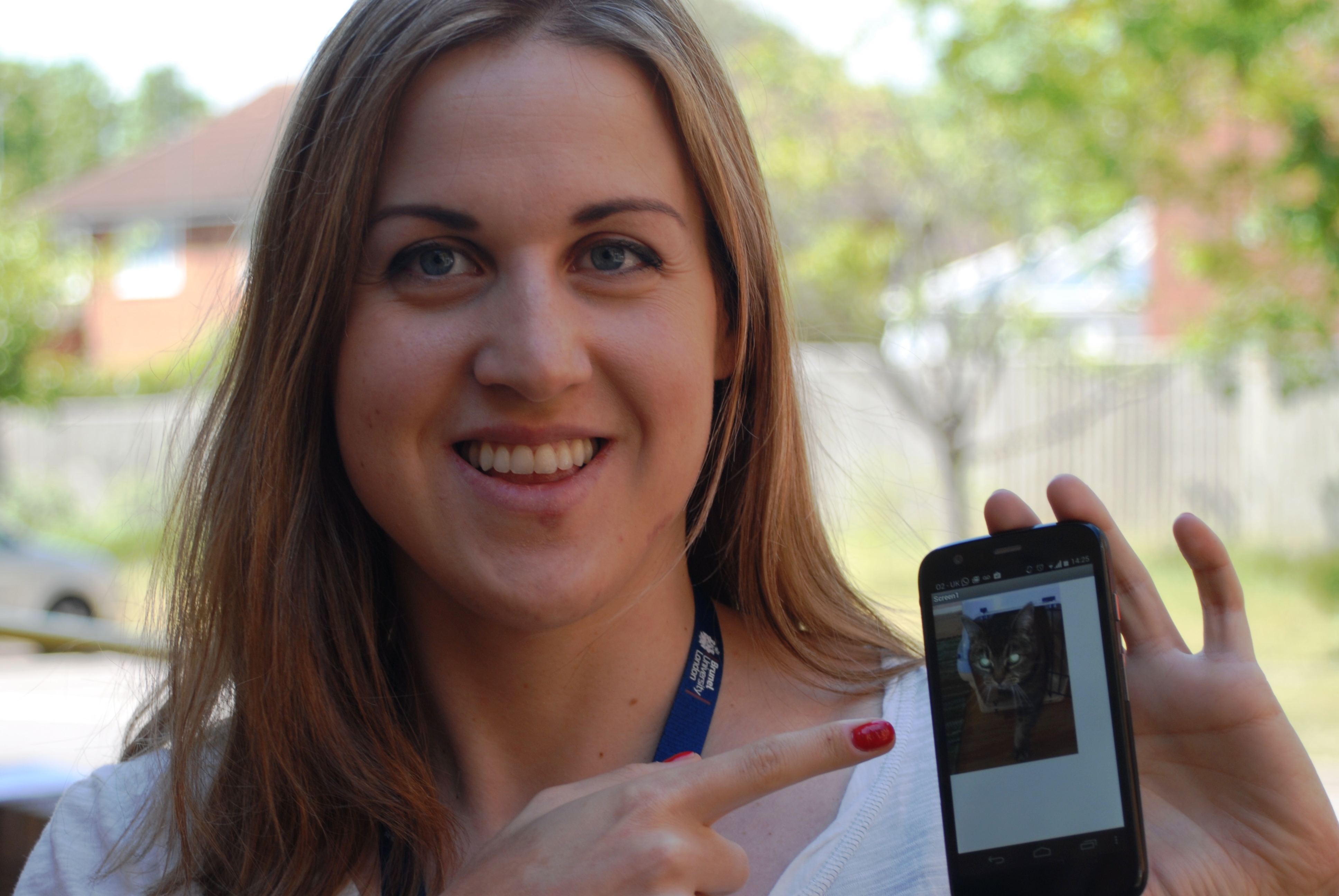
Apple’s WWDC keynote was noteworthy for a lot of reasons, but one of those was the fact it featured women presenting on stage for the first time. Usually at such events it’s a male-only affair. The tech industry is still dominated by (mostly white) men, and when women make an appearance it generates headlines -- which is both sad and a little crazy.
On Saturday (June 13) an all-female group of IT experts, engineers and scientists will take over the Google Campus at the heart of London’s Tech City in a bid to not only break a Guinness World Record, but also to challenge preconceptions.
Led by Brunel University London lecturer Dr Lela Koulouri and UCL academic Dr Sue Black, the 'App-a-thon' will involve teaching thousands of kids across the UK how to build smartphone apps.
According to Dr Koulouri, "While we aim to break the Guinness World Record for people learning to code mobile apps at the same time, the main objective is to change perceptions. By having people learn from female trainers, we’ll demonstrate to young girls and boys that IT careers can be fun and that female scientists are not geeks or freaks but absolutely normal women".
The App-a-thon is organized by the British Computer Society, and the Chartered Institute for IT. Further details from [bcs.org]
-

How to install iOS 9 beta on your iPhone or iPad right now, with or without a dev account
Publié: juin 9, 2015, 3:23pm CEST par Wayne Williams
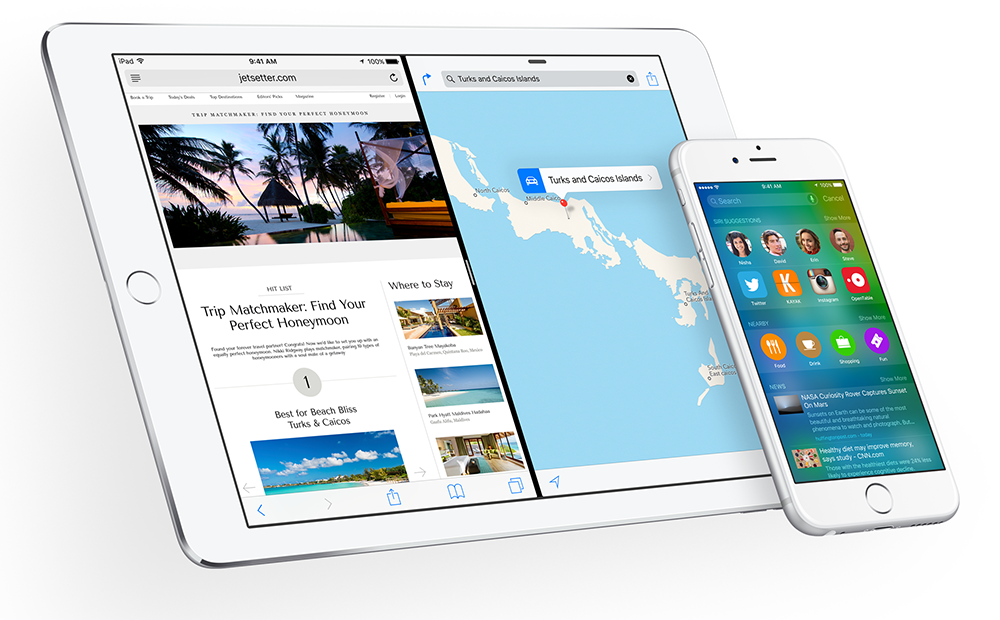
At the WWDC keynote on Monday, Apple demoed iOS 9. New features include updates to Apple Pay, a News app, improved Notes, a more intelligent Siri, updated keyboard, split screen on iPad, and a new low power mode that promises to deliver up to three more hours of battery life.
If you’re an iOS user, it looks like a great update, and you’ll be able to try out the public beta when it is released in July (the finished version will be released in the fall). But hold on, you don’t want to wait that long? Well the good news is there’s a developer preview already available, and it’s possible to install this with or without a dev account. A word of warning though, don't skip the backup step as according to Apple, "Devices updated to iOS 9 beta cannot be restored to earlier versions of iOS".
With an Apple Developer account
If you have a dev account, updating to iOS 9 beta 1 is pretty straightforward. Just follow these steps.
- Backup your iOS device, using the latest version of iTunes.
- Next, go to the iOS Developer Program site. Sign up for an account by clicking the 'Enroll now' button. It’s $99 a year, which is obviously rather expensive if you have no intention of becoming a developer.
- Tap on the iOS 9 beta link, and select the device you want to install the operating system on. It’s compatible with all iPhones from iPhone 4s and up, all iPads from iPad 2 and up, and all iPad minis.
- The beta will download. Extract the .ipsw file to your desktop. Connect your device to your computer, and then launch iTunes. Hold down the shift key on a Windows PC, or the option key on a Mac, and click on 'Check for update'.
- Select the iOS 9 file on your desktop and let iTunes get on with things.
Without an Apple Developer account
It’s just as straightforward to install the beta on a device without a developer account (the steps are mostly the same), but there’s some risk involved. Follow the instructions carefully, and you’ll likely be fine.
- Back up your device to iCloud (and maybe iTunes, for good measure). If and when you decide to go back to iOS 8.3, you’ll need to restore all of the personal content you backed up to iCloud. Anything not backed up will be lost.
- Download the correct beta of iOS 9 for your device. The best way to get hold of this is through Evad3rs.Net. It's important you download the correct version for your device. If you don't know which one you need, look for the model number on the back cover of your iPhone or iPad.
- Extract the .ipsw file to your desktop. Connect your device to your computer, and then launch iTunes. Hold down the shift key on a Windows PC, or the option key on a Mac, and click on 'Check for update'.
- Select the iOS 9 file and let it get on with things.
-

Sorry haters, but science proves the Internet really, really loves Apple
Publié: juin 9, 2015, 2:19pm CEST par Wayne Williams
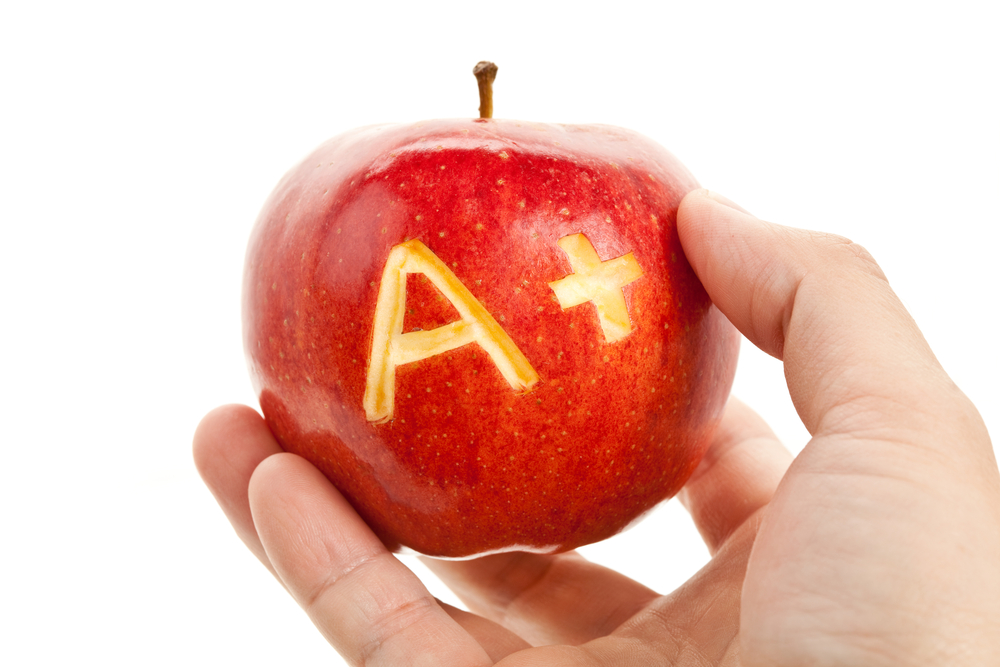
During yesterday’s WWDC keynote, Apple showed off new versions of OS X, iOS, and watchOS, as well as taking the wraps off of its new streaming music service and radio station.
While the event was going on, people were tweeting about it, and Oxford University's TheySay linguistics tool monitored Twitter from just before the keynote started to just after it ended, and then used the data from 94,528 Apple-related tweets to work out the overall sentiment, including what people thought about each of the products and services Apple covered. The result was overwhelmingly positive.
Sure, you could argue that it would predominately be Apple lovers who would be tweeting about an Apple event, but even so, there was hardly any negativity to be seen.
Dr. Karo Moilanen, CTO and co-founder of TheySay told us, "It is fair to say that no other company exists whose positive sentiment ratings are constantly so extremely high. For example, the ratios between strongly positive and negative sentiment were in most cases above 90 percent".
The positive sentiment ratings were as follows, ranked in order of positivity:
- Apple Pay -- 98 percent
- iOS 9 -- 96 percent
- OS X 10.11 El Capitan -- 88 percent
- Apple Music -- 85 percent
The event itself was also received very well.
- WWDC 2015 (event itself) -- 93 percent
- Keynote Speech -- 94 percent
Steve Jobs, understandably, still casts a large shadow over Apple events. As Moilanen says, "A most remarkable undercurrent of sentiment during the event was detected around Steve Jobs who was referred to more often than HomeKit, for example. Many tweeters referred to their dear memories of past WWDC events in which the legendary Jobs set standards to new heights. Accordingly, many comparisons between Steve Jobs and Tim Cook were made by tweeters which were anti-Cook in many cases". Jobs accounted for circa 5 percent of the references and Cook circa 12 percent.
Swift going open Open Source was seen as a baffling move by many who thought it was something that Steve Jobs would never have allowed had he still been alive.
The most talked-about announcements were Apple Music and Apple Pay. The latter generated the highest levels of positive sentiment, while the former produced the highest levels of negativity, as well as the highest levels of excitement and agitation. Amongst tweets about Apple Music, negative references to Spotify and other rivals featured prominently.
How trustworthy is the data? Very. TheySay Ltd is a sentiment analysis company spun out of the University of Oxford in 2011, and its linguistics tool is the most advanced and accurate of its kind, not merely monitoring positive and negative sentiment but also softer human emotions like humor and sarcasm -- which is essential when monitoring the likes of Twitter.
The full data/analysis graphs can be viewed below.
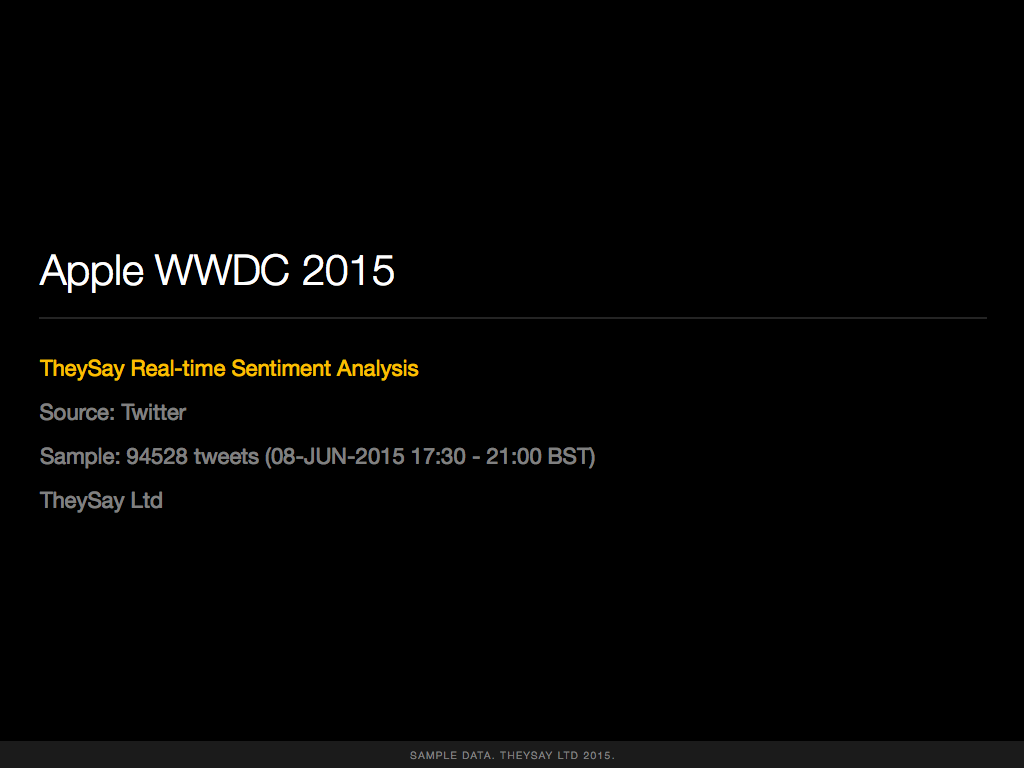
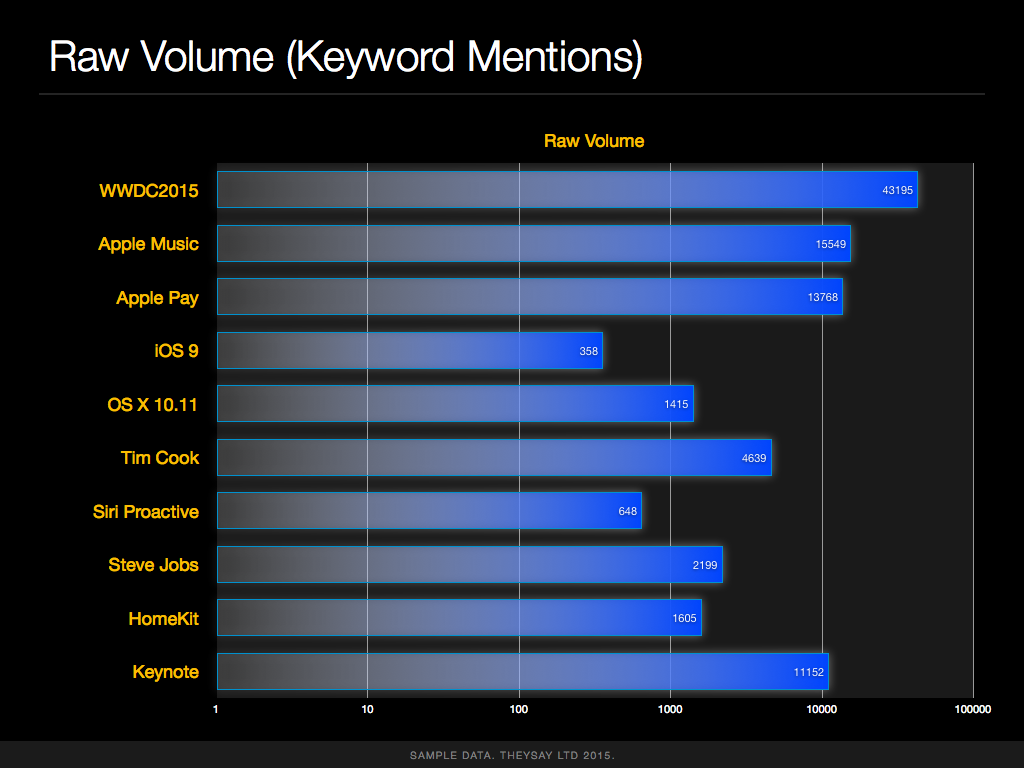
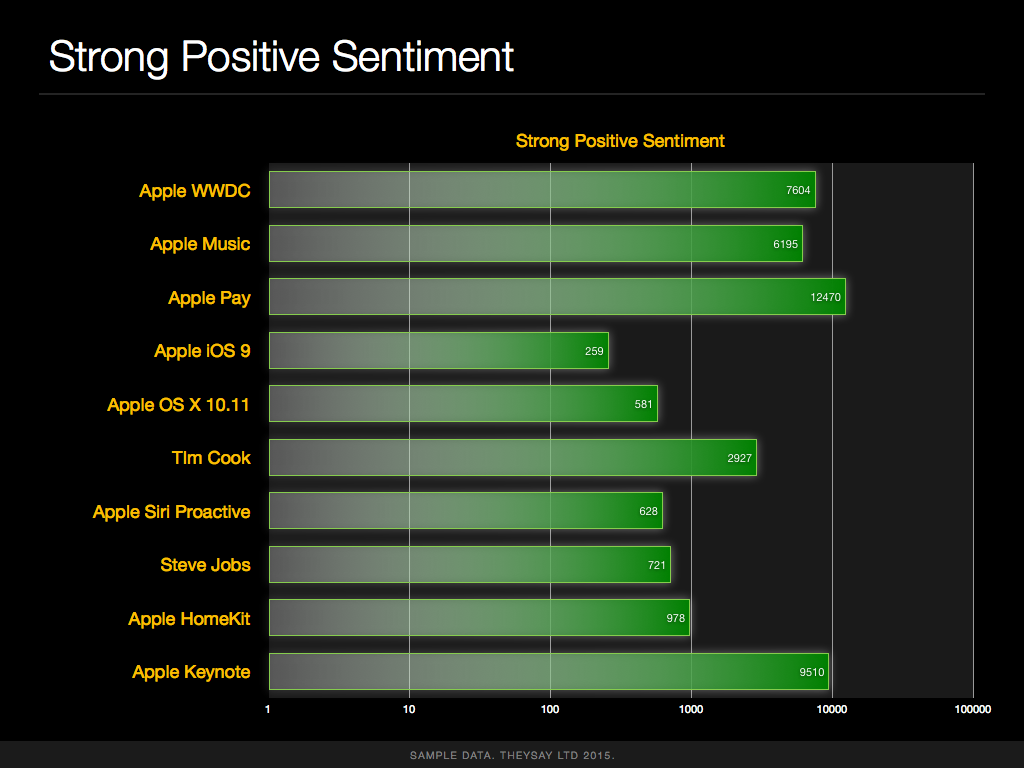
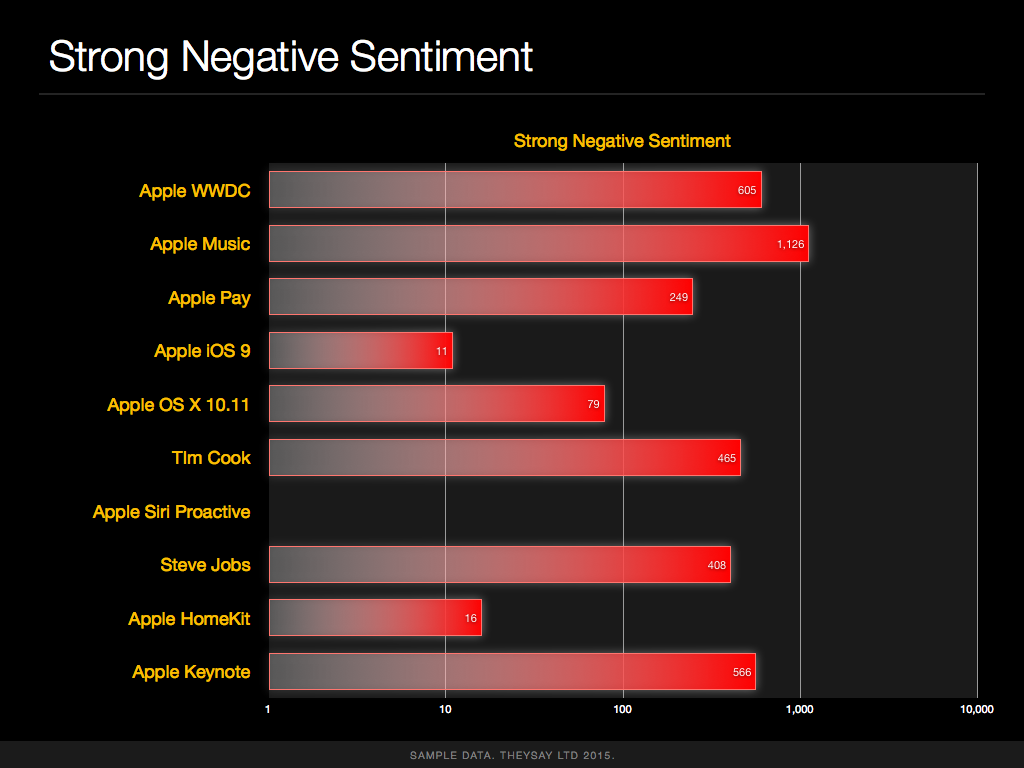
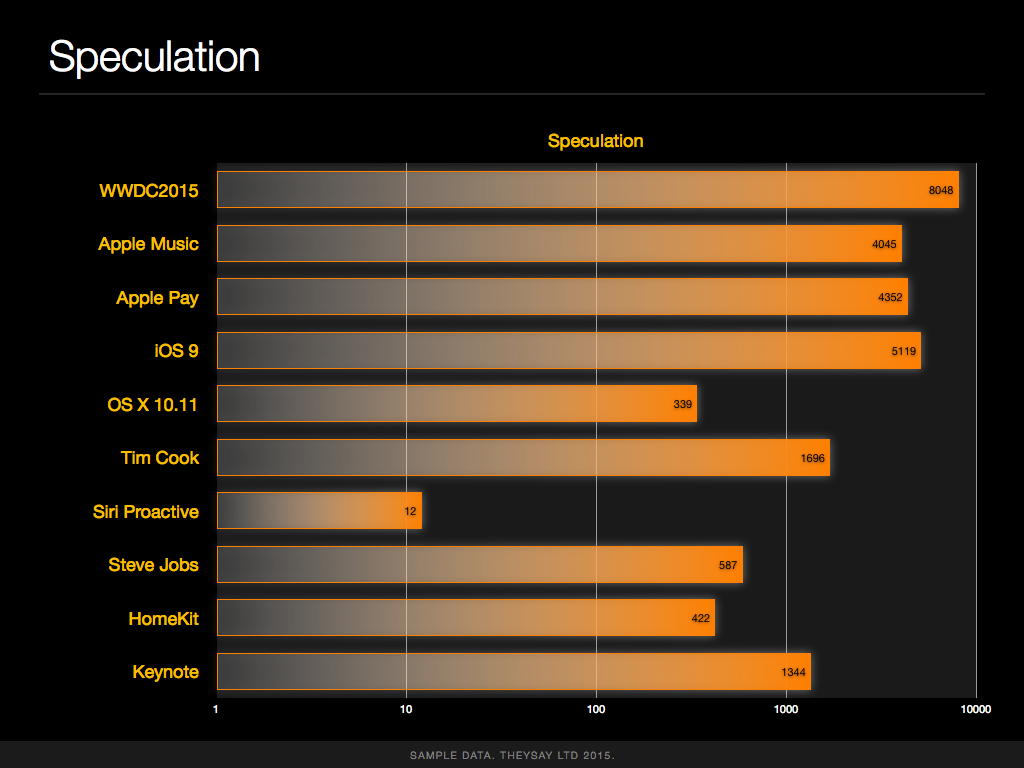
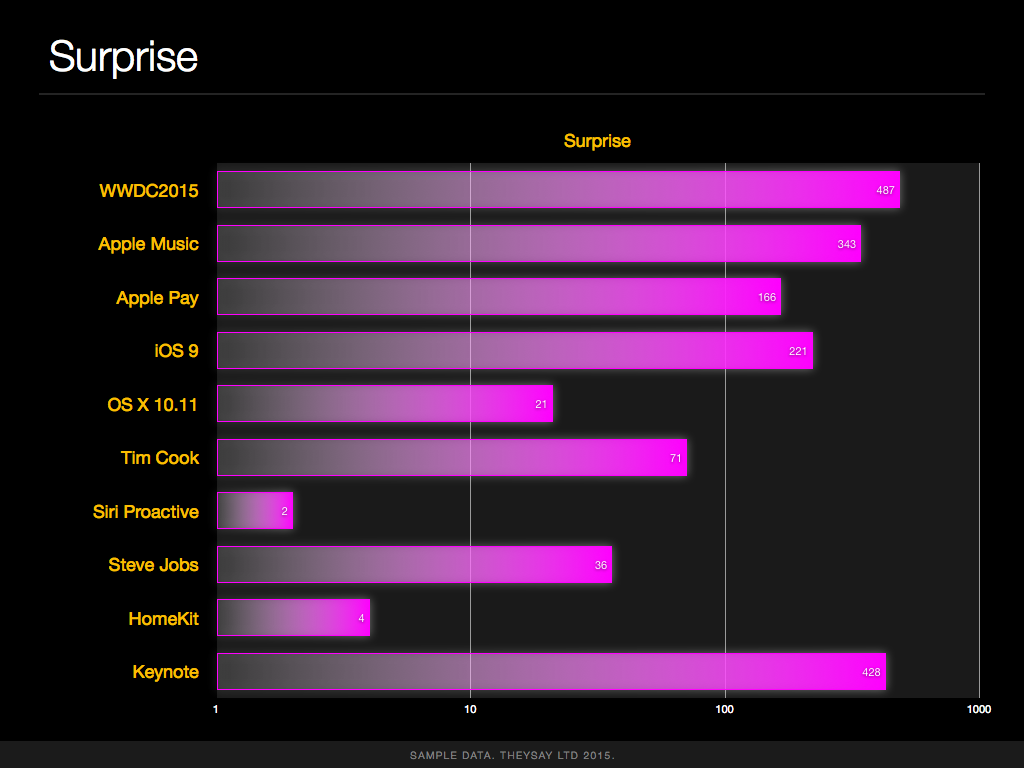
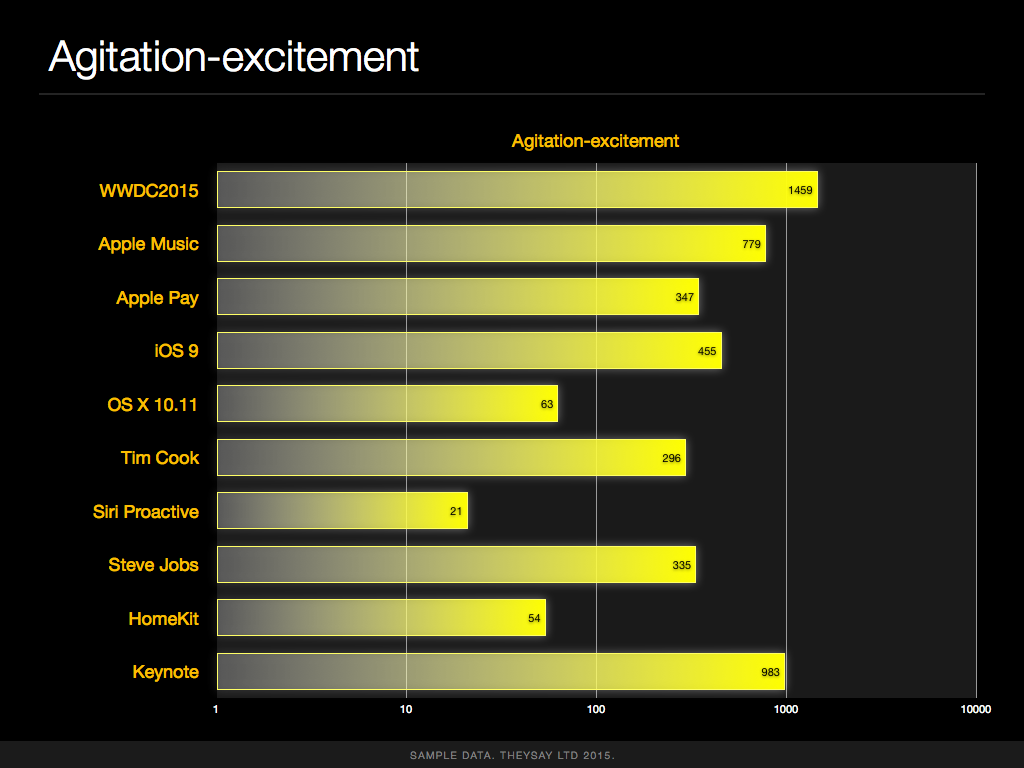
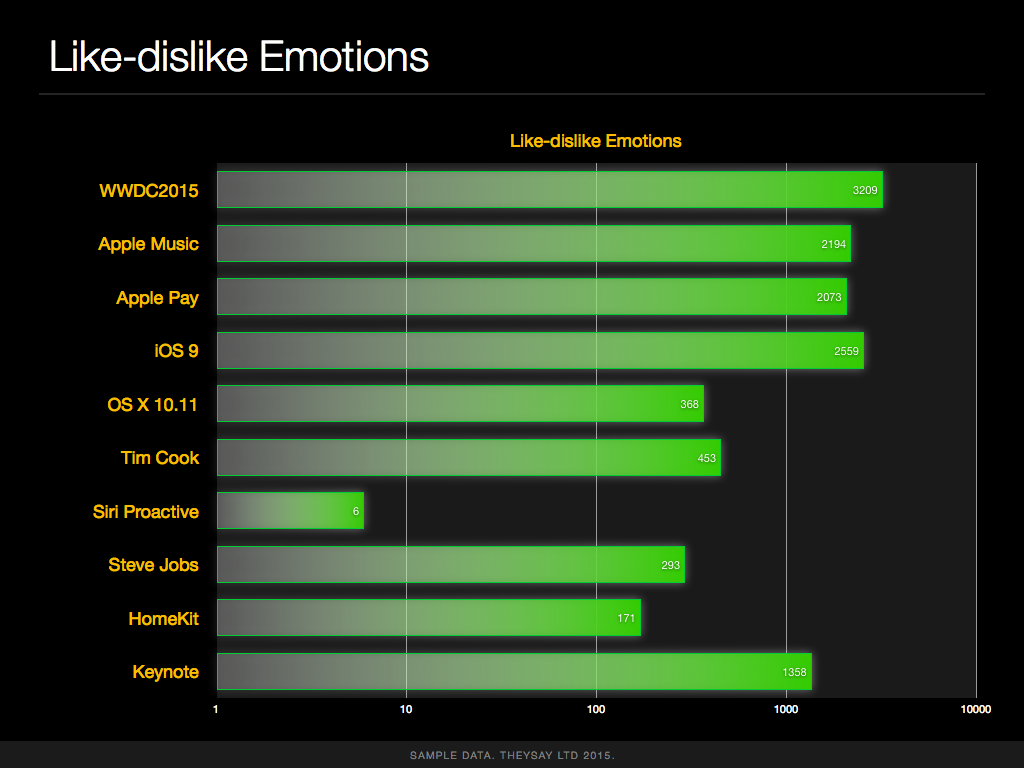
Image Credit: Feng Yu / Shutterstock
-

Apple to make it much easier for Android users to switch to iOS 9
Publié: juin 8, 2015, 10:32pm CEST par Wayne Williams
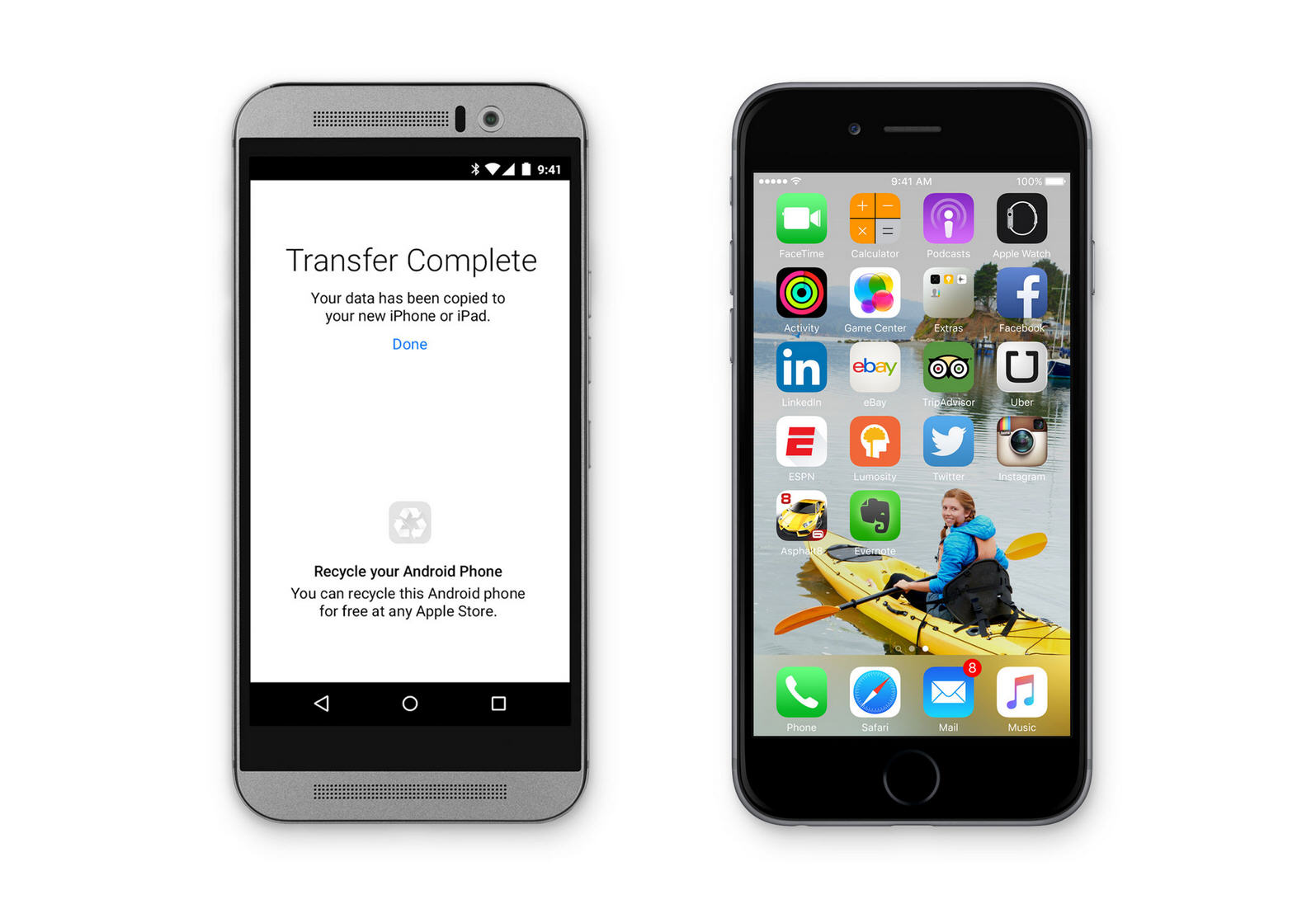
Part of the reason why smartphone owners stay with their current choice of mobile operating system is they don’t want to have to mess around transferring personal data between devices. If you have an iPhone, upgrading to a newer model is very straightforward, and if you have an Android device, upgrading to a newer or different one is just as easy. Switching operating systems is, however, a real pain.
Apple wants to make it easy to go from Android to iOS and is introducing a new app called 'Move to iOS'.
With the new app you’ll be able to securely and wirelessly transfer contacts, message history, camera photos and videos, web bookmarks, mail accounts, calendars, wallpaper, and DRM-free songs and books from your old Android device to a new iPhone.
Of course getting all your favorite apps is an issue too, but Move to iOS will help you rebuild your app library. It will recommend any free apps you use, so you can quickly download them, and add paid apps to the iTunes Wish List. You’ll still need to buy them of course.
Move to iOS isn’t available yet and will likely launch in the fall alongside iOS 9.
-

Apple Watch gets much smarter and more useful with watchOS 2
Publié: juin 8, 2015, 9:30pm CEST par Wayne Williams
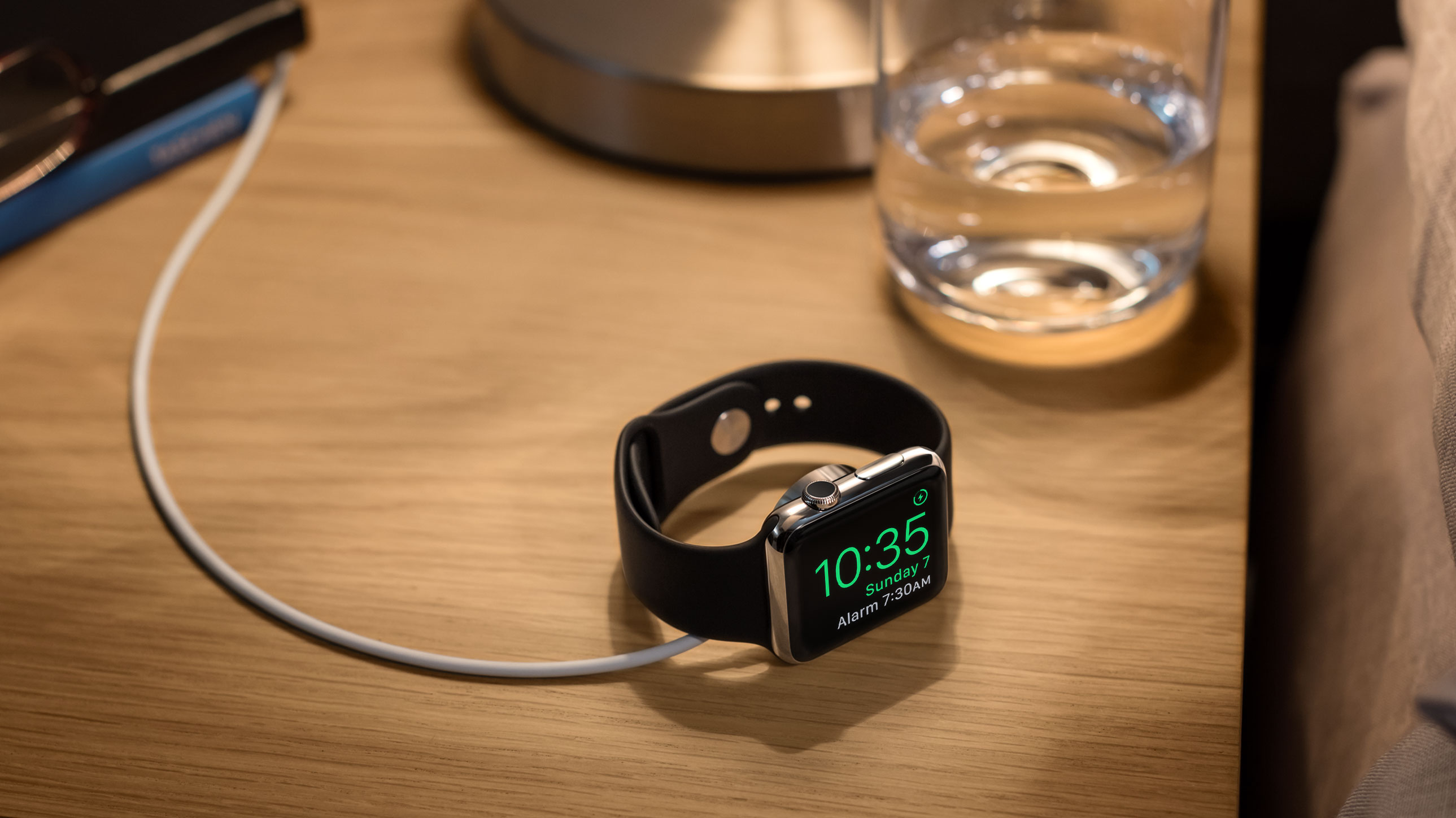
I own an Apple Watch, and I like it, but like so many Watch owners I appreciate that this is a device whose future is coming, but isn’t quite here yet. In my first impressions review I said "What it can do right now is great, but what it will be able to do in the future will be amazing", and it seems as if the future might be coming sooner than I expected.
At the WWDC 2015 keynote Apple revealed watchOS 2, and to say it’s impressive is an understatement. With the upgrade Apple is seriously improving the usefulness of its wearable.
New watch faces, which were sorely needed, are coming, including a face called Time-Lapse that shows iconic locations around the world shot over a 24-hour period. Time Travel will display information like temperatures and upcoming events, and you can go backward and forward in time by up to 72 hours.
If you prefer you can add your own photos to the watch, so you’ll see those when you raise your wrist to check the time.
See Also: 24 hours with Apple Watch [First-impressions review]
There’s also a cool Nightstand mode which shows the time in a sideways view while the device is charging, and it includes a gentle alarm to wake you up in the morning. The digital crown is used to snooze the alarm, and you can turn it off altogether using the side button.
Apple CEO Tim Cook also revealed that the latest version of watchOS will be able to run apps natively, so they'll load faster (hooray) and enjoy better performance and additional features. The "logic" for watch apps that used to only run on your iPhone can now move to the watch, making it much more useful.
You’ll be able to see information from third-party apps on the watch face, and also use Siri to show Glances for apps.
You’ll be able to watch short videos on the watch as well.
You can now use multiple colors when sending sketches to friends, and if you know a lot of people who own an Apple Watch (I don’t), you can add many more people, and sort them across multiple screens.
Fitness apps can contribute to the Activity rings on the Watch, making the feature far more worthwhile, and you can use Siri to start and stop a workout by saying something like "Hey Siri, start a 30 minute run". Activity and workouts can be shared via Facebook and Twitter and there are new 3D achievements to unlock.
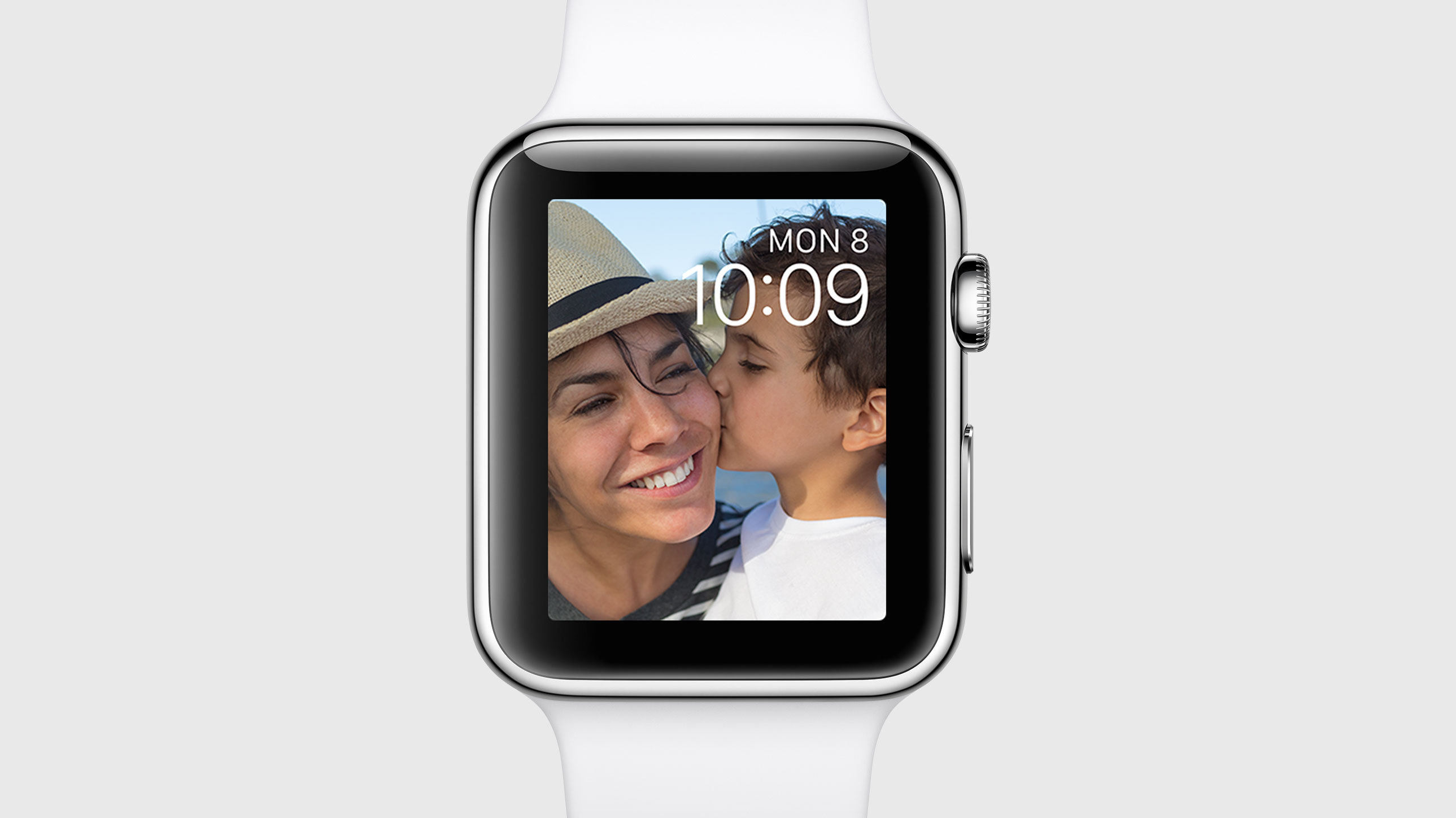
One of the more useful features is the ability to reply to emails directly from your wrist, and you can have FaceTime audio chats now too.
Anyone worried about the weakness of Watch's security, will be pleased to know watchOS 2 includes a new feature called Activation Lock. Activating your watch will require your iCloud Apple ID and password, so should your watch get stolen or lost, your personal data will remain safe.
Apple says a month after launch there are already thousands of apps that will work with Watch, but hopefully the new watchOS will result in many more, and better apps in the future. Developers will have much greater access to Watch hardware features via WatchKit, including elements like the Taptic Engine and Digital Crown, microphone, speaker, accelerometer and video. Apps at the moment aren't great, but they will definitely get better as a result.
The watchOS 2 update is due to arrive this fall.
-

App Store hits 100 billion downloads
Publié: juin 8, 2015, 8:37pm CEST par Wayne Williams
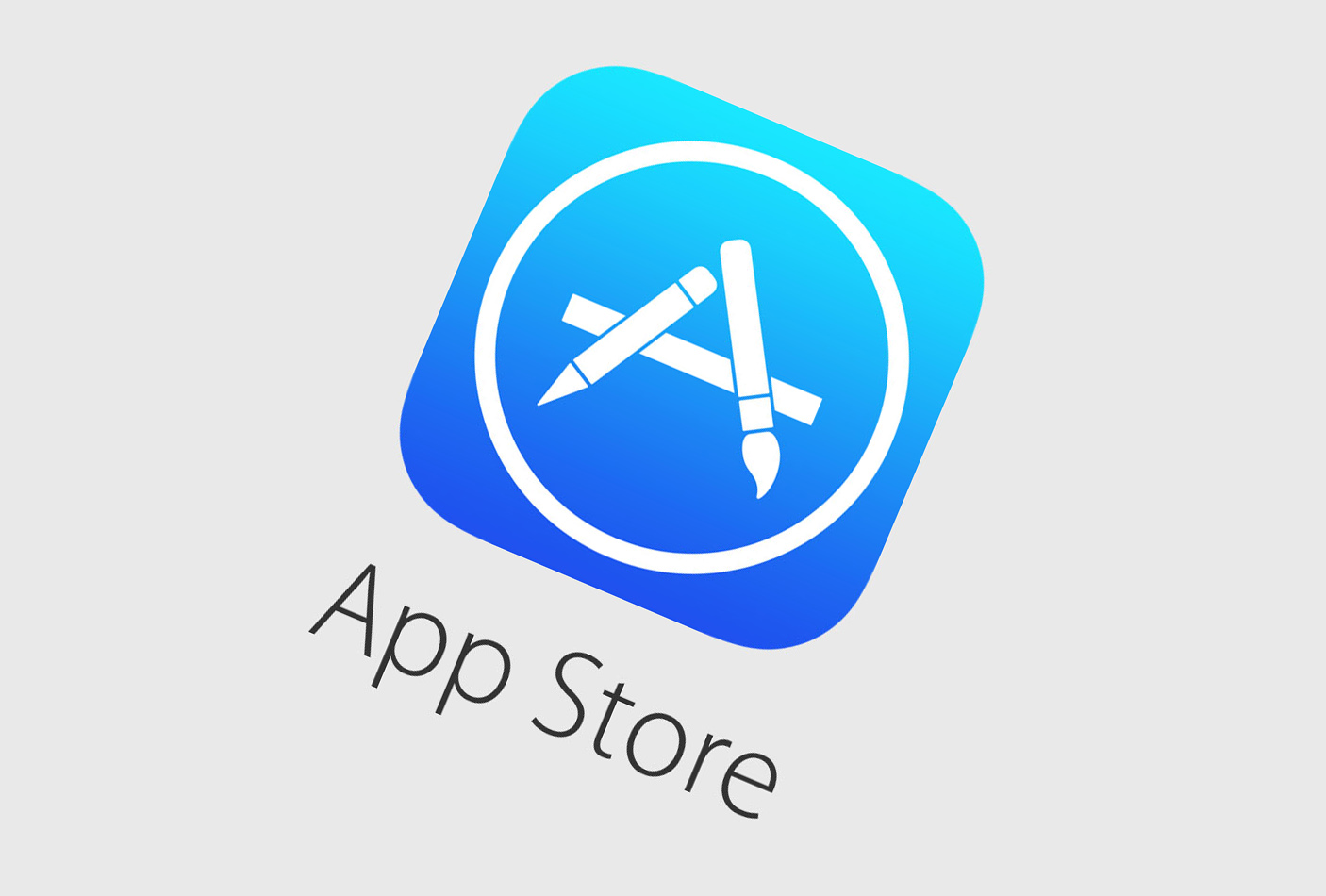
The App Store is unquestionably one of the main reasons for Apple’s continuing success. It certainly revolutionized the smartphone, and despite a serious challenge from Android it remains the top store for apps across the world.
At WWDC 2015, CEO Tim Cook revealed a couple of major numbers -- the biggest being that over 100 billion apps have been downloaded from the App Store since it opened.
In a video celebrating the success of the App Store, Apple says "It took television 13 years to reach its first 50 million users. It took the App Store 17 months". Impressive.
There are now 850 apps downloaded every second, and the average person has 119 apps. How many they use, or have installed on their devices, is another matter of course.
With WWDC being a developer conference, Tim Cook had good news for anyone creating apps for iOS -- Apple has paid out over $30 billion to developers so far.
-

Apple Pay comes to UK next month
Publié: juin 8, 2015, 8:03pm CEST par Wayne Williams
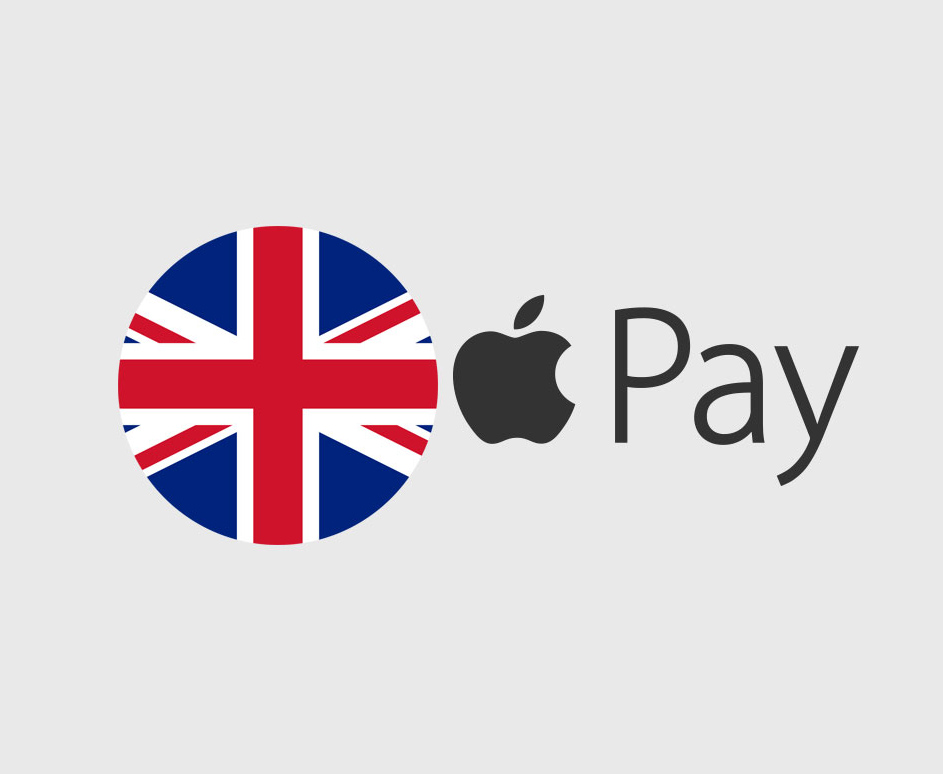
As expected at this year’s WWDC, Apple has revealed that the Apple Pay payment system is coming to the UK in July. As revealed by Jennifer Bailey, Apple Pay chief (and a woman!), it will be accepted at over 250,000 UK merchant locations including Marks and Spender, Costa, Waitrose, Boots, and MacDonald’s.
That’s quite a bit shy of the million plus locations now accepted in the US, but it’s still a good start.
That’s not all though, as commuters will be able to pay using the service on the London transportation system.
By this fall (or autumn, since we’re talking about Apple Pay in the UK), the system will work with nearly 70 percent of credit and debit cards in the UK.
-

Kingston Digital announces new USB Type-C flash drive
Publié: juin 8, 2015, 5:14pm CEST par Wayne Williams
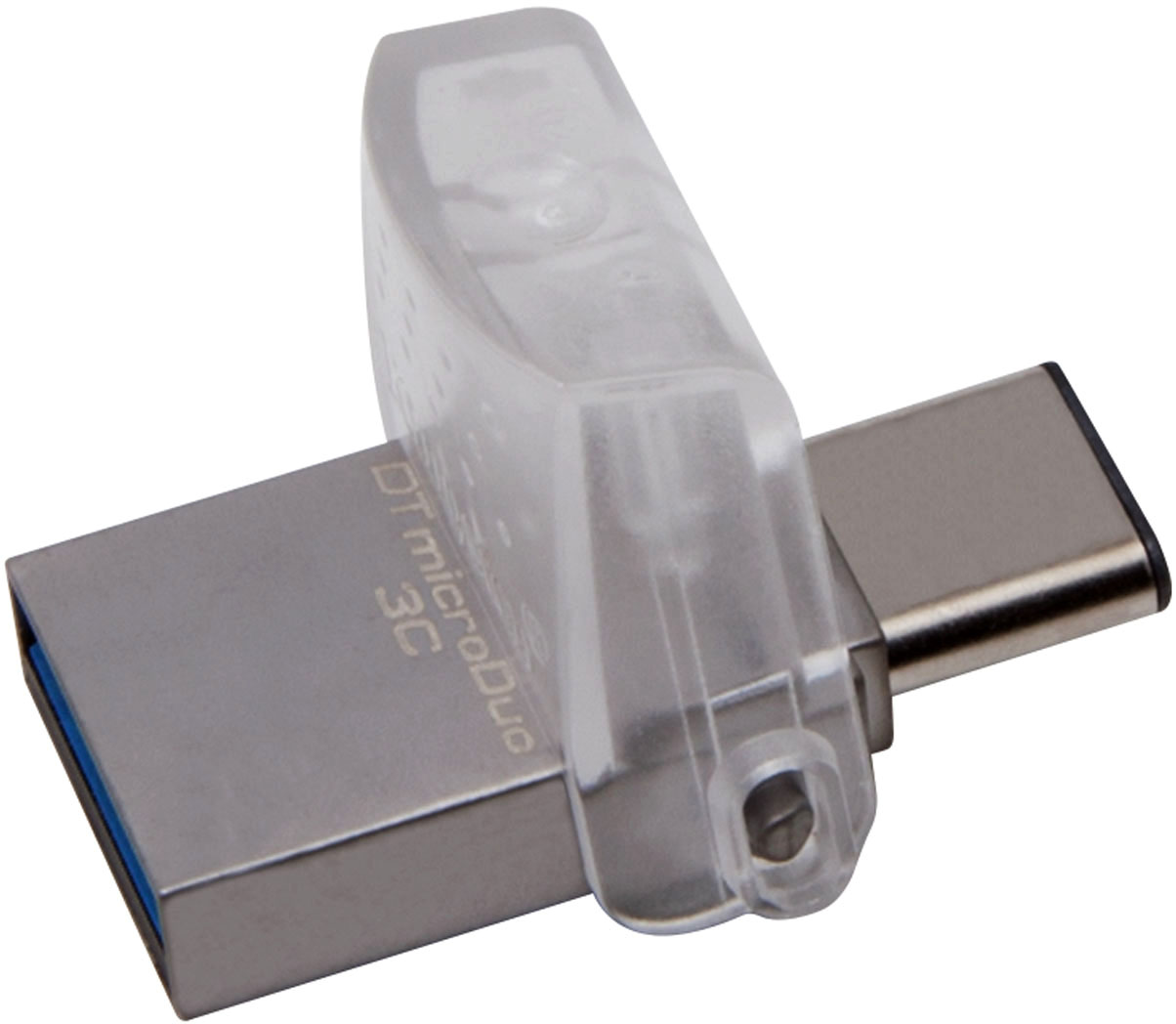
All sorts of reversible USB Type-C devices are beginning to arrive now, and Kingston Digital has just announced the launch of its DataTraveler microDuo 3C USB Flash drive.
This device has a dual interface that works with both standard USB Type-A (3.1, 3.0, 2.0) and USB Type-C ports and comes in three capacities -- 16GB, 32GB and 64GB.
The DataTraveler microDuo 3C offers fast USB 3.1 performance with read speeds up to 100MB/s and write speeds up to 15MB/s.
"DataTraveler microDuo 3C has a dual interface that accommodates both USB Type-A and USB Type-C ports to give users easy access to the latest USB interface", says Valentina Vitolo, Flash business manager, Kingston. "Our drive provides more storage, features fast data transfer speeds and helps make the new technology more accessible to consumers".
There's no word on pricing or availability as of yet.
See also: Patriot announces USB Type-C flash drive for new MacBook and Chromebook Pixel
Kingston will also soon start shipping the DataTraveler Micro 3.1 (see below). This is one of the world's smallest USB Flash drives, and it will also be available in 16GB, 32GB and 64GB capacities.
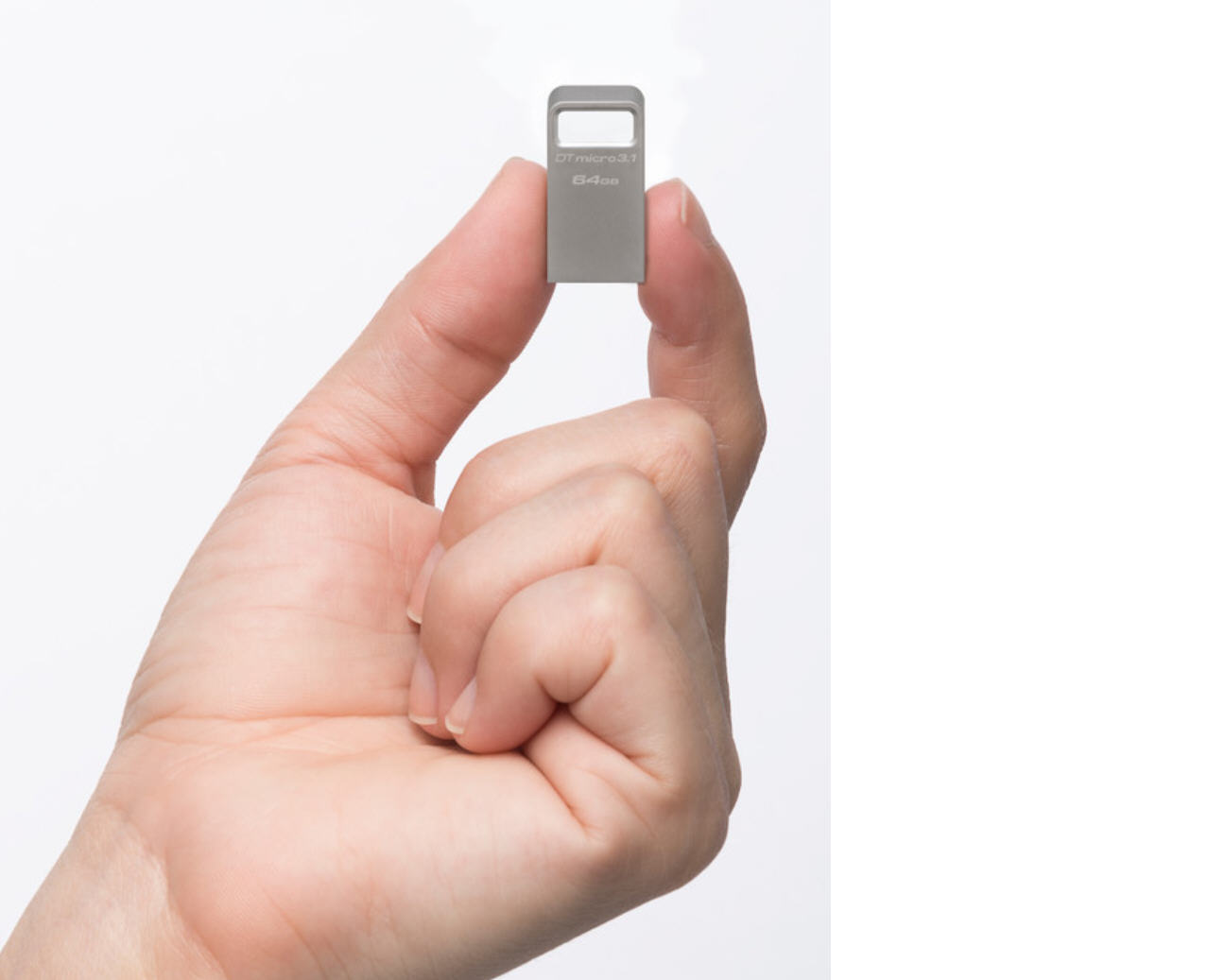
-

MaxCDN launches new CDN reseller platform
Publié: juin 8, 2015, 1:17pm CEST par Wayne Williams
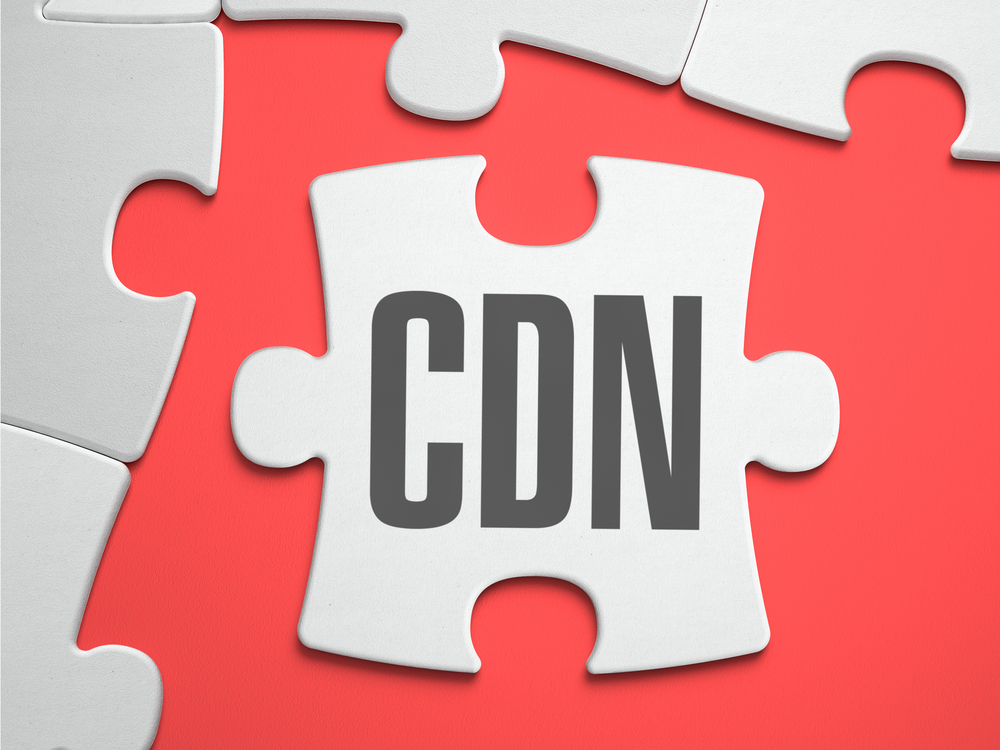
MaxCDN, a content delivery network based in Los Angeles, has launched a new partner program for web hosting providers, digital agencies, and other companies that create and/or deliver web content on behalf of their customers.
The highlight of this new program is the redesigned CDN management system for resellers. According to a MaxCDN announcement, the new reseller platform offers:
- easy management and billing for multiple customer accounts
- branded internal and customer interface
- 24/7 engineering support
- a digital service with an estimated future worth of $12 billion
"People who consume content on the Internet hate waiting", says David Henzel, co-founder of MaxCDN. "There’s an abundance of proof of this, like the often-cited research on load time and conversions. This research supports why the CDN market is estimated to grow from $4 to $12 billion dollars by 2019. Our new reseller platform lets companies tap into this market, expand their offering, brand the MaxCDN experience as their own, and help customers deliver content better".
MaxCDN and other content delivery networks like EdgeCast, CloudFlare, and Akamai have offered reseller programs in the past, but, according to Henzel, none have matched the simplicity and ease of the re-invented MaxCDN platform.
To learn more about requirements, qualifications, and commissions associated with becoming a MaxCDN reseller, you can attend the MaxCDN reseller webinar on June 23. You can also visit the MaxCDN partner page.
Photo Credit: Tashatuvango/Shutterstock
-

How to watch Apple's WWDC 2015 keynote live on any device including Windows, Linux and Android
Publié: juin 8, 2015, 8:52am CEST par Wayne Williams
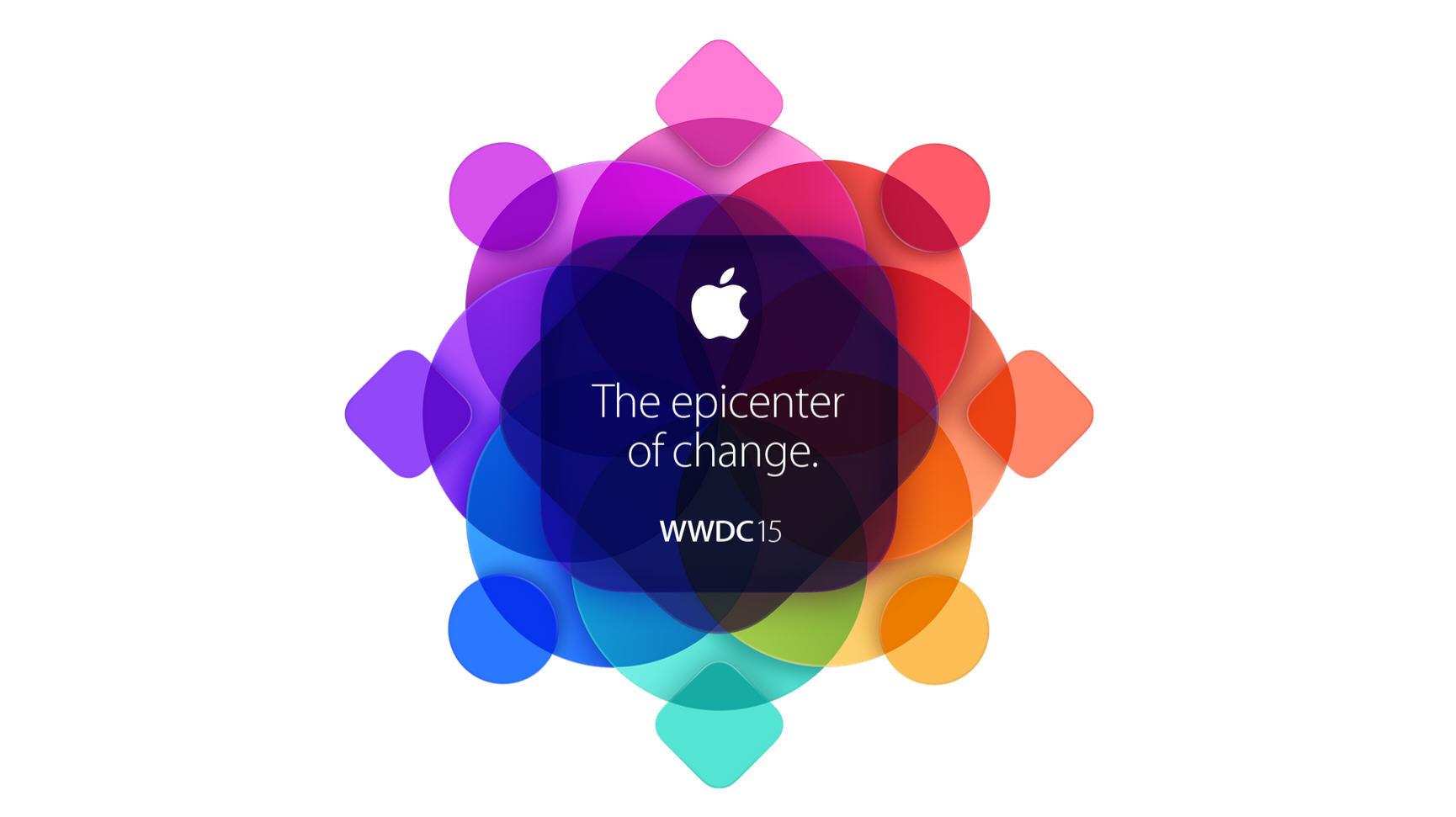
Apple's Worldwide Developer Conference kicks off today, Monday 8 June, in San Francisco, with the big keynote speech scheduled for 10am PST/6pm BST.
As WWDC is for software developers, Apple doesn’t usually reveal major new hardware -- typically it’s just updated versions of existing products. You can certainly expect news on iOS 9 and OS X 10.11, as well as Apple Watch.
We’re also expecting Apple to launch a music streaming service, and to announce Apple Pay in the UK, and possibly other countries. The new Apple TV was expected to make an appearance (after all its shape is visible in the image above), but rumors say this is no longer the case.
We’ll know for certain what Apple will be announcing once the big keynote speech begins and you can watch it live online.
As always, Apple likes to preach to the faithful, so there are the usual restrictions in place. Live streaming the keynote requires Safari 6.0.5 or later on OS X v10.8.5 or later; Safari on iOS 6.0 or later. Streaming via Apple TV requires second- or third-generation Apple TV with software 6.2 or later. Assuming you have what's required, you can watch the keynote live here.
There’s also an official WWDC app available. This lets you stream videos from current and previous WWDC sessions, start watching on one iOS device, and pick up where you left off on another, browse times, locations, and descriptions for sessions, labs, and special events, and keep up with the latest news, get important notifications, and see daily photos.
If you have a Windows or Linux PC or an Android device you can still watch the event, but you’ll need VLC Media Player installed. Assuming you do, open it, and click on "Media" at the top left. Go to "Open Network Stream" and paste in the network URL of the live Apple event which is:
http://p.events-delivery.apple.com.edgesuite.net/15pijbnaefvpoijbaefvpihb06/m3u8/atv_mvp.m3u8
This link won’t go live until the event begins.
Feel free to share your comments about what Apple is showing off in the comments below.
-

How to install Windows 10 Insider Preview on Oracle VirtualBox [Updated]
Publié: juin 6, 2015, 9:15am CEST par Wayne Williams
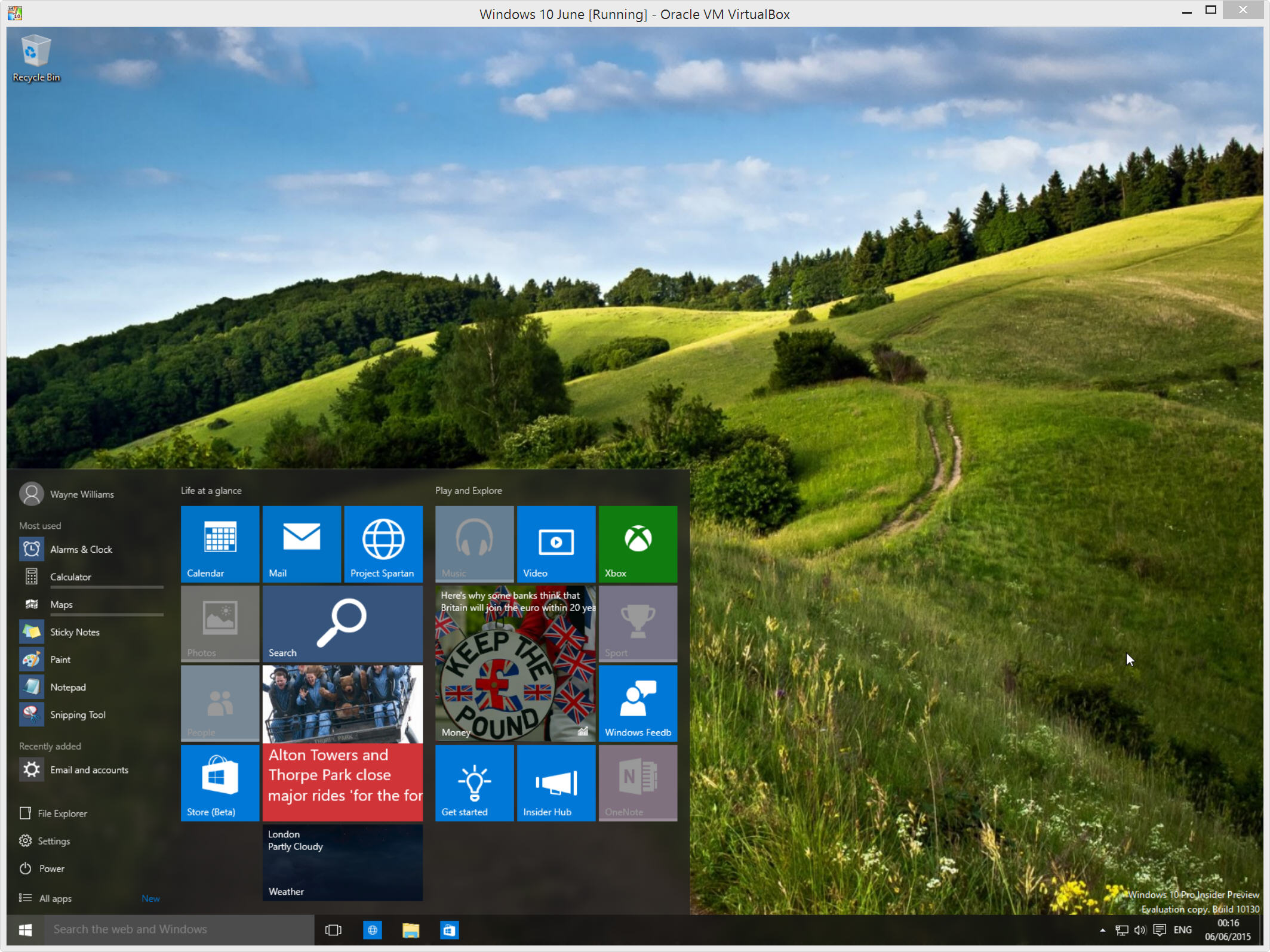
Microsoft has just released ISO files for Windows 10 Insider Preview Build 10130. This build is currently only available to Insiders on the Fast ring due to the presence of a couple of major bugs that Microsoft is looking to squash before making the release available to testers on the Slow ring. The ISOs have been released to allow people who are having problems upgrading through the usual Windows Update route to install the build.
As with the previous releases, Build 10130 is still an early version of the OS, so you wouldn’t be advised to run it as your main operating system, especially with those unresolved bugs, and while you could set it to dual boot, running it in a virtualized environment is a much more sensible idea.
The process is very simple -- all you need is a copy of Oracle VM VirtualBox (make sure you have the latest version) and a Windows 10 Insider Preview ISO. There are x86 and x64 editions available in a choice of languages.
To set up Windows 10 in VirtualBox, launch the software and click New in the Manager window. In the Create Virtual Machine dialog box enter "Windows 10" as the name of the operating system.
Select Windows 10 as the version. (Choose Windows 10 (64bit) if you have a 64-bit ISO).
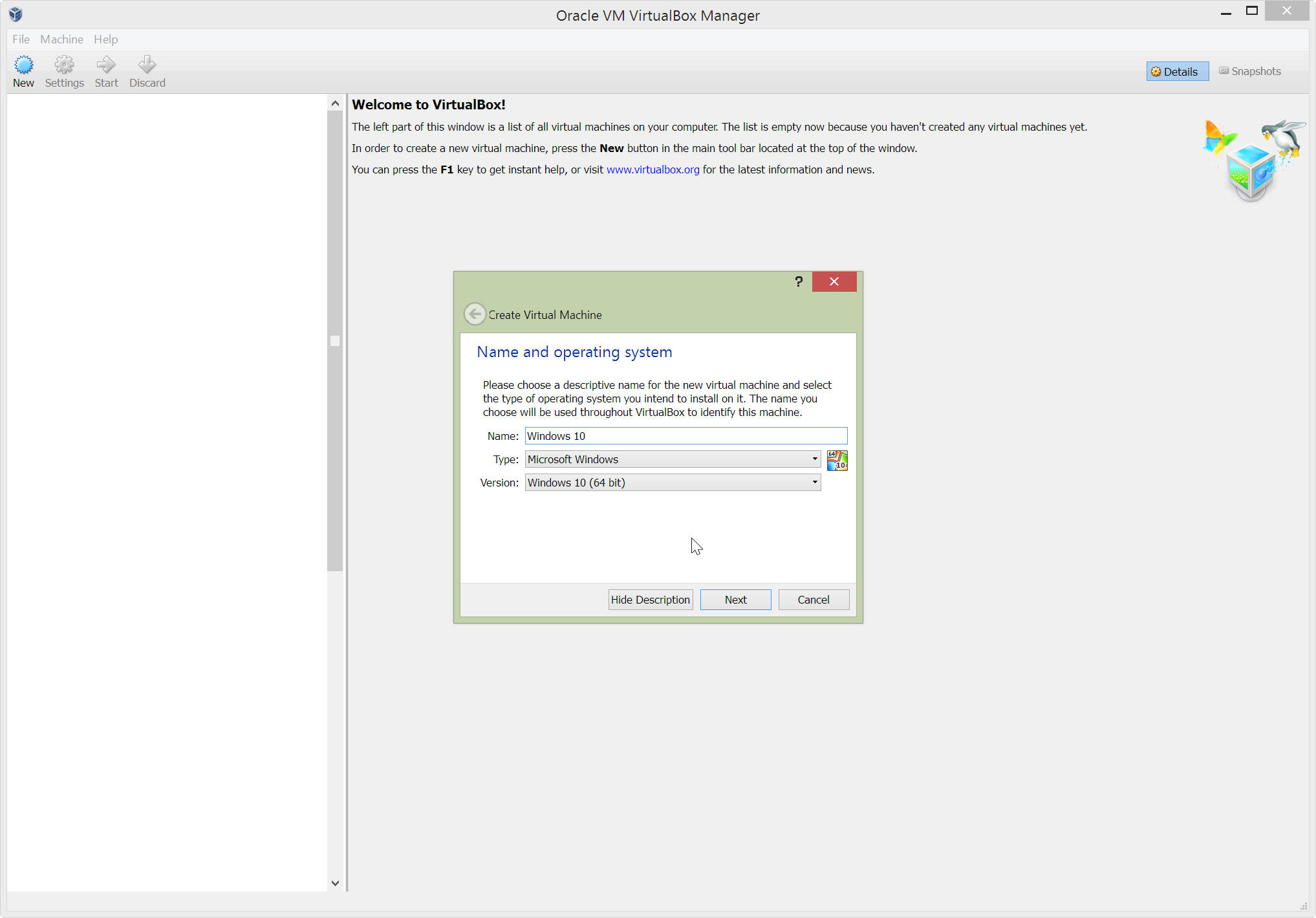
Hit Next, then set the Memory Size. The recommended figure should be fine. On the following screen choose to "Create a virtual hard drive now" and click Create. Accept VDI (VirtualBox Disk Image) as the hard drive file type. You’ll be asked if you want the new virtual hard drive to be dynamically altered (it will resize as required) or a fixed size. The latter option is faster, so select that.
Click Create and VirtualBox will begin building the drive.
See also: Will your PC or tablet run Windows 10? Check out the official system requirements
When done, click the Start button in the Manager. In the "Select start-up disk" window, click the folder icon and navigate to the Windows 10 ISO.
Click Start and Windows 10 should begin to load. Select your language settings, then click the "Install now" button. Accept the license terms. Choose the "Custom: Install Windows only (advanced)" option.
Click Next, and the installation process will begin.
When it’s done, choose to "Get going fast" using the express settings (you can customize things if you prefer). Say who owns your PC (you or an organization), and then sign in with your Microsoft account. You can create an account if you don’t already have one.
Next you’ll have the option of creating a PIN to sign in with instead of a password.
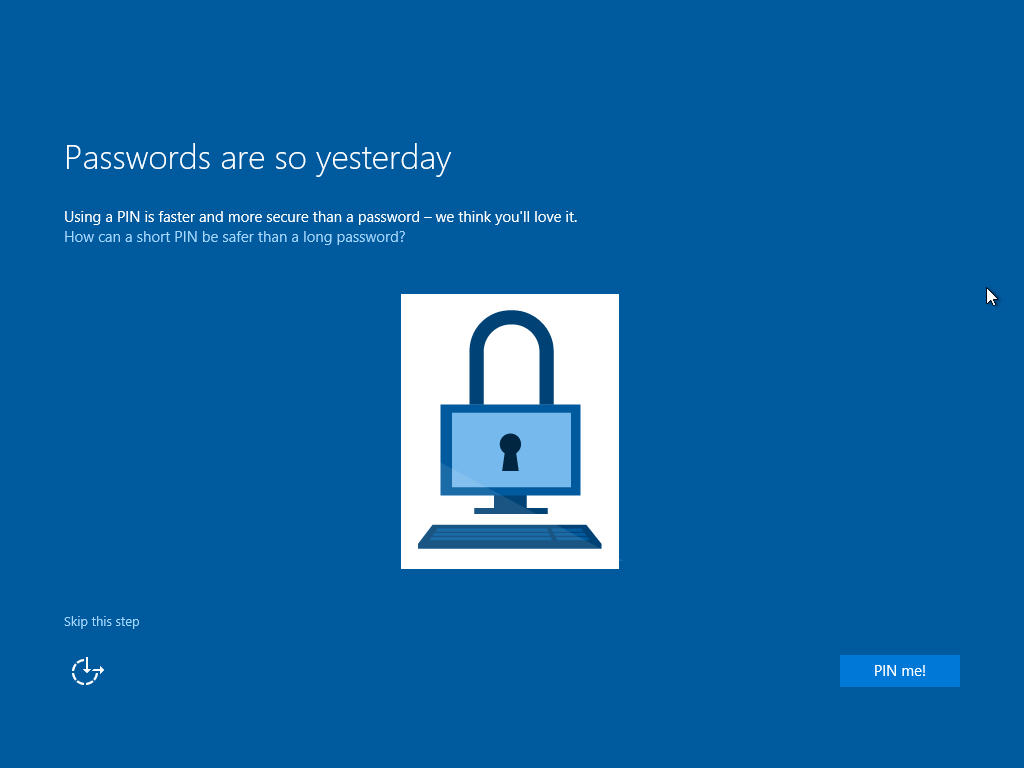
Windows 10 will finalize everything and you can begin exploring the new OS.
If you want to resize the window, click View in VirtualBox and select Fullscreen or Scaled Mode (which is my preference).
The simplest way to shut down Windows 10 when you no longer need it is to click the X in top right corner of VirtualBox and select "Power off the machine".
You can find some troubleshooting tips here. Also, note if you’re running Hyper-V in Windows 8.x (Microsoft’s built in virtualization tool) you’ll need to disable it in order to be able to run VirtualBox.
-

Skype for Web (Beta) now available to all US and UK users
Publié: juin 5, 2015, 4:50pm CEST par Wayne Williams
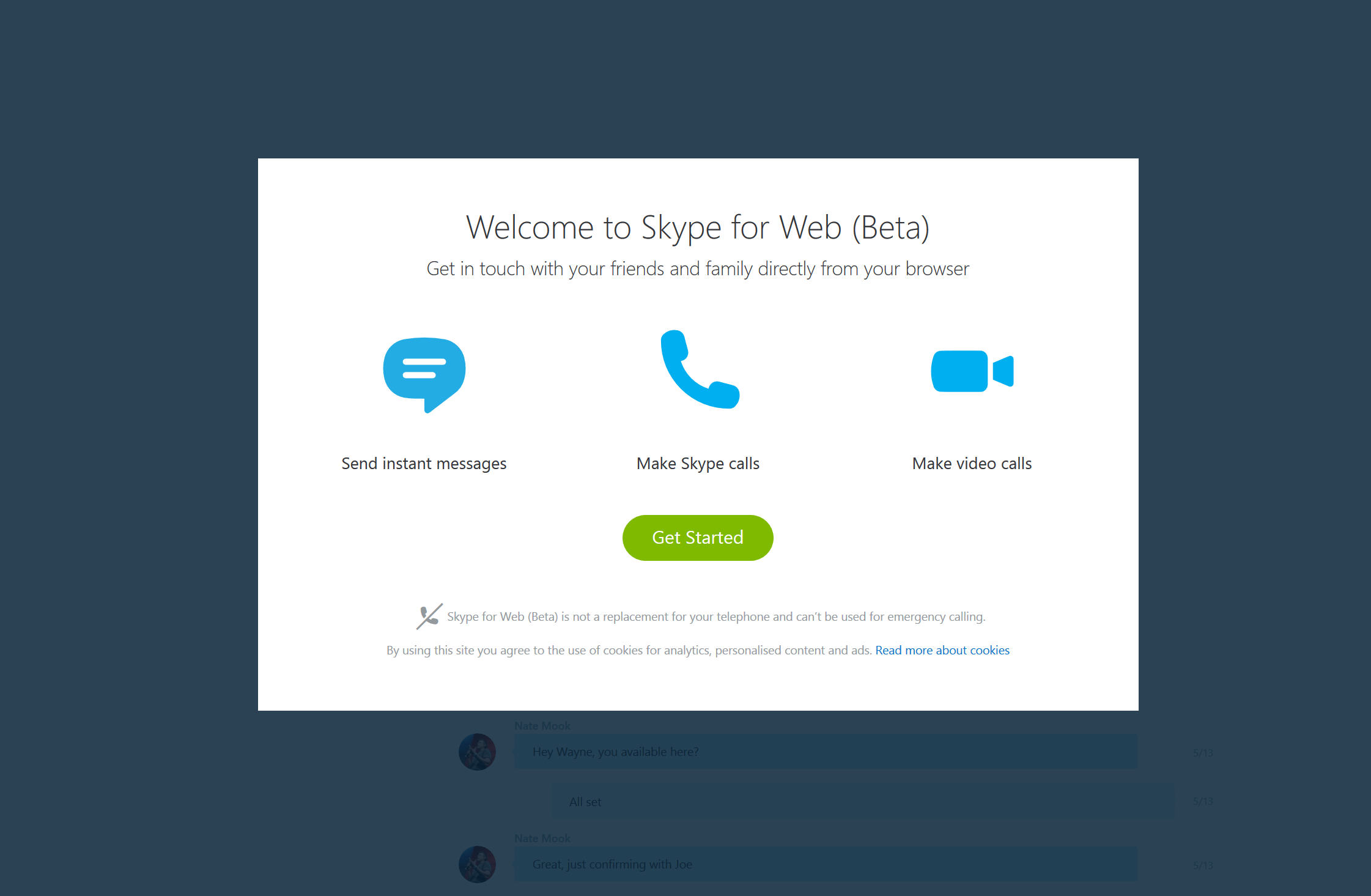
The web-based version of Skype first debuted last year, but as an invite-only service. Today however, Skype is opening it up to new and existing users in the US and UK.
To use the service just go to web.skype.com and sign in (or sign up) and you can send instant messages, and make Skype or video calls directly in your browser.
Skype for Web introduces a new timeline view to make it easier to search for people and groups on the chat service, and there are also new notifications too, which you’ll have to enable when you sign in.
At the moment Chromebooks don’t currently support the Skype for Web plug-in for calling, so Microsoft suggests just using the instant messaging feature to communicate with friends for now.
Announcing the launch, Jonathan Watson, Senior Product Marketing Manager -- User Reach & Engagement at Skype, said:
Skype for Web is an important step for Skype as we move towards implementing the technology to make Real-Time Communications (RTC) on the web a reality. But just as importantly, we’re doing it because the hundreds of millions of people that visit Skype.com every month told us they want to call and IM when they visit our website. We know how critical it is for you to get to your conversations -- and Skype for Web helps you get connected anytime.
While the web beta is only available in the US and UK for now, it will be rolling out to the rest of the world in the coming weeks.
-

Windows 10 Insider Preview Build 10130 headed for Slow ring soon
Publié: juin 4, 2015, 6:18pm CEST par Wayne Williams

Windows Insiders on the Fast ring were able to update to Build 10130 last Friday, and in my experience it’s a solid, and reliable release. Microsoft is mostly focusing on tweaking and stabilizing the OS now, but the new build comes with some noteworthy improvements, including new icons, new taskbar animations, and other general UI enhancements.
The Build is good, and stable enough that Microsoft is getting ready to release it to the Slow ring. This will be the first release there since Build 10074 back at the end of April, and its arrival on that ring will also herald the release of new ISO files.
See Also: How to customize Windows 10 Insider Preview Build 10130
As to when Build 10130 will arrive for more cautious testers it’s hard to say. According to Microsoft's Operating Systems Group general manager Gabriel Aul, the company is working on fixing one particularly thorny issue, and then it will push it out.
The issue is being worked on at the moment, but Microsoft currently has no ETA to share. It’s possible it might arrive tomorrow, or early next week.
@CJStevo 10130 will go to Slow ring, working on 1 more fix for it first.
— Gabriel Aul (@GabeAul) June 4, 2015
As always we’ll keep you informed when the new build is made available.
If you’re currently on the Slow ring and would like to switch to the Fast one, you can do so by going to Settings > Update & Security. Click on 'Advanced options' and make the change there.
-

F-Secure does a Symantec and shuts down its failed cloud storage service
Publié: juin 4, 2015, 5:15pm CEST par Wayne Williams

Storing your personal data in the cloud makes a lot of sense. It provides a handy backup, and you can access your content from anywhere. I write about a lot of cloud storage services, but I only really use established ones from the likes of Google and Microsoft.
I would consider, and use, storage services from other companies, but the problem is they can’t be trusted. So many of the sites I sign up to -- usually purely to write about -- shut down within a year or so. These aren’t storage services from firms you’ve never heard of either. Today’s discontinued service is Younited by F-Secure.
Younited isn’t a straightforward cloud service, what it does -- or rather did -- is aggregate content from all your devices and cloud services and let you access it securely from anywhere. You could access the service on the web, and there were apps for Windows, Mac, iOS, Android, and Windows Phone (yes, Windows Phone!). It was a decent service, and although I only tried it out briefly, I liked it.
The email I received from F-Secure said:
We are sorry to inform you that we are shutting down our personal cloud storage service on October 1, 2015. We are refocusing our product portfolio, and younited by F-Secure will not be developed further.
Younited by F-Secure and younited events by F-Secure will no longer be available after October 1, 2015.
Users need to transfer all of their content to another storage solution by October 1, 2015, at the latest, after which any files left in Younited will be deleted in accordance to F-Secure's Privacy Principles.
A year ago, Symantec shuttered Norton Zone. This gave users 5GB of online storage and promised to keep them safe from malicious content. Like F-Secure, Symantec trusted its name -- and the promise of strong security -- would be enough to pull in users, but of course it wasn’t.
Photo Credit: bahri altay/Shutterstock
-

Microsoft reveals some impressive numbers at Computex 2015
Publié: juin 3, 2015, 2:47pm CEST par Wayne Williams

As well as showing off a load of new Windows 10 compatible hardware during its keynote at Computex 2015, Microsoft also revealed some interesting numbers relating to the new OS, and the PC market in general.
While PC shipments and sales have definitely fallen a lot over the past few years, it’s far from game over for Windows powered devices, and things have started looking up.
According to Microsoft, there have been 600 million more PCs sold now than four years ago, and there are 96 new Windows 10 devices in the pipeline, including brand new form factors like the Quanta Compute Plug and FoxConn Kangaroo.
Microsoft says by the time Windows 10 debuts on July 29 there will be over 300 different products running the new OS.
Wondering how many Windows Insiders there currently are? Microsoft says at the latest count some 4 million people are now part of the program, trying out new builds (on PC, tablet and phone) and helping to shape the direction of the new OS. That’s quite a leap as the last time Microsoft updated its By The Numbers site, there were just 1.7 million registered Insiders.
Photo Credit: Shutterstock/Sharpshutter
-

FoxConn Kangaroo is an ultra-portable Windows 10 PC
Publié: juin 3, 2015, 1:07pm CEST par Wayne Williams
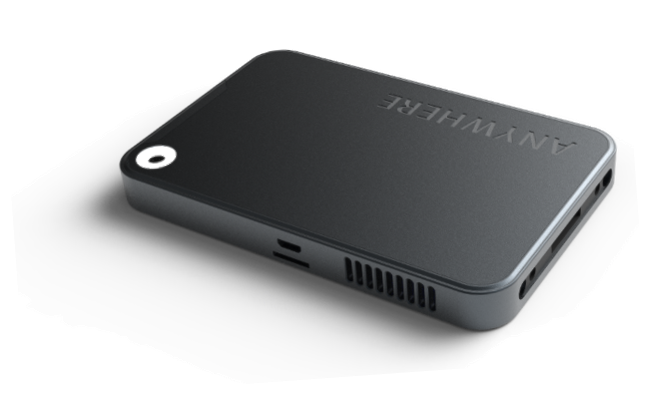
Tiny, portable Windows 10 PCs seem to be all the rage at the moment. During a Computex 2015 keynote, Microsoft’s Nick Parker revealed not only the Quanta Compute Plug, a mini-PC in a power adapter, but also FoxConn’s Kangaroo.
This is a petite, battery-powered PC in a box that boasts the latest Intel Cherry Trail processor and connects to your TV or monitor via HDMI.
The device includes a fingerprint reader to support Windows Hello and promises up to six hours of battery life -- just enough to let you catch up on work, show off that presentation, or stream a movie or two.
As with the Quanta Compute Plug, there’s currently no word on pricing or which territories the new device will be available in, but I like the look of this, and can see it appealing to anyone who needs access to the full version of Windows 10 on the go.
-

Quanta Compute Plug is a mini Windows 10 PC in a power adapter
Publié: juin 3, 2015, 12:13pm CEST par Wayne Williams
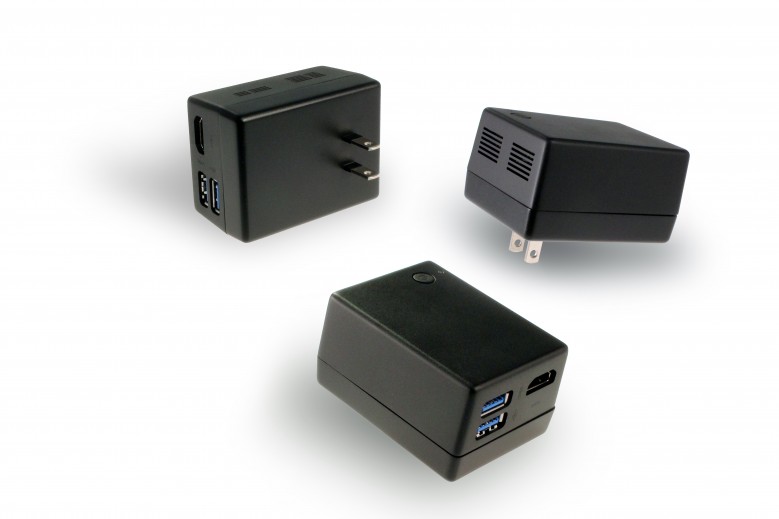
Computex 2015 is well underway, and at a keynote earlier today at the Taipei International Convention Center, Nick Parker, corporate vice president of Microsoft's OEM Division, talked up the benefits of Windows 10, and also introduced various new devices designed specifically with the new operating system in mind.
One of the most interesting was the Quanta Compute Plug. This is a mini-PC housed not in a stick, but inside a power adapter.
The device plugs into the HDMI port and turns any TV or monitor into a smart computer. According to Microsoft, users can control the screen using Cortana via Bluetooth remote or headset.
See also: FoxConn Kangaroo is an ultra-portable Windows 10 PC
As well as the HDMI port, the Compute Plug features an on/off button and two USB 3.0 ports. There’s nothing much else known about the device at the moment, including price or where it will be sold, but expect more details to become available shortly.
-

This simple 8-character message crashes Skype and prevents it opening again
Publié: juin 3, 2015, 9:23am CEST par Wayne Williams
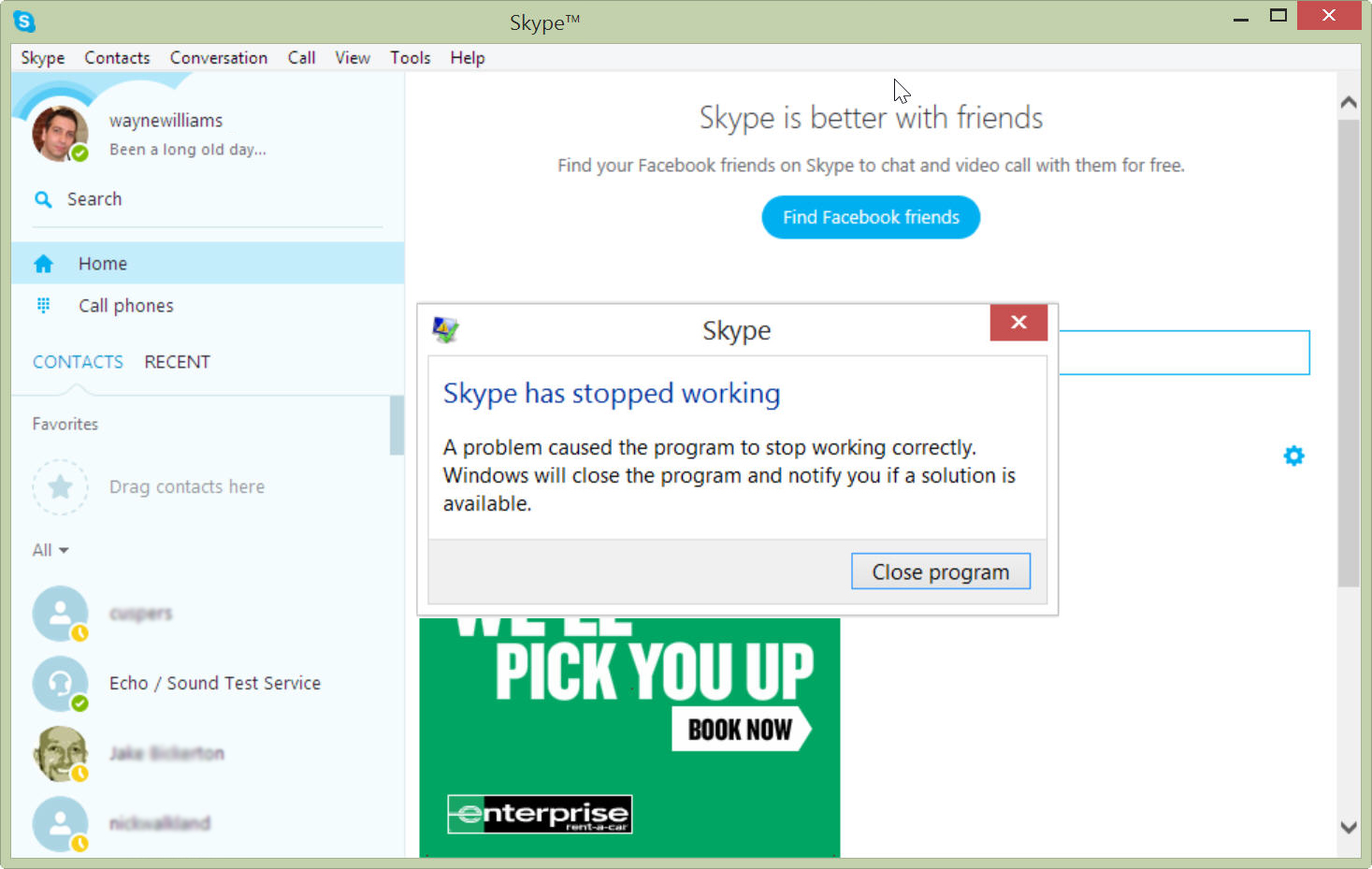
Last week it was discovered that all it takes to crash an iPhone is a text message. Send the string of characters to an iPhone-owning friend (or foe) and boom, instant restart for them.
Skype users are beginning to discover that they’re the victims of a similar bug. As originally reported by VentureBeat, and confirmed by ourselves, sending a certain 8-character message causes Skype to crash, and receiving it results in the app crashing every time you try to sign in.
A Skype user called "Giperion" originally posted the bug on the Skype Community Forums where he observed that "clearing chat history not helps, because when skype download chat history from server, it will crash again", which makes the bug particularly problematic.
Unlike the iOS bug, this doesn't require the sending of a complicated mix of foreign and English characters either -- it’s just "https://" (without the quotes).
The bug affects Skype on Windows, Android and iOS, but not Skype for Mac or the Skype app for Windows 8.x/10. Sending the characters from Skype on Android or iOS doesn’t cause the app to crash, but it closes the instant the message is received.
A workaround for Windows users has been discovered. If the person who sent you the message deletes it (ask nicely!), you can uninstall Skype, install an older version and start using it again.
Skype has confirmed the bug and tells us it is "working to provide a resolution".
-

Exclusive Offer: Get 6 months of Bitdefender Internet Security 2015 for FREE!
Publié: juin 2, 2015, 9:43am CEST par Wayne Williams
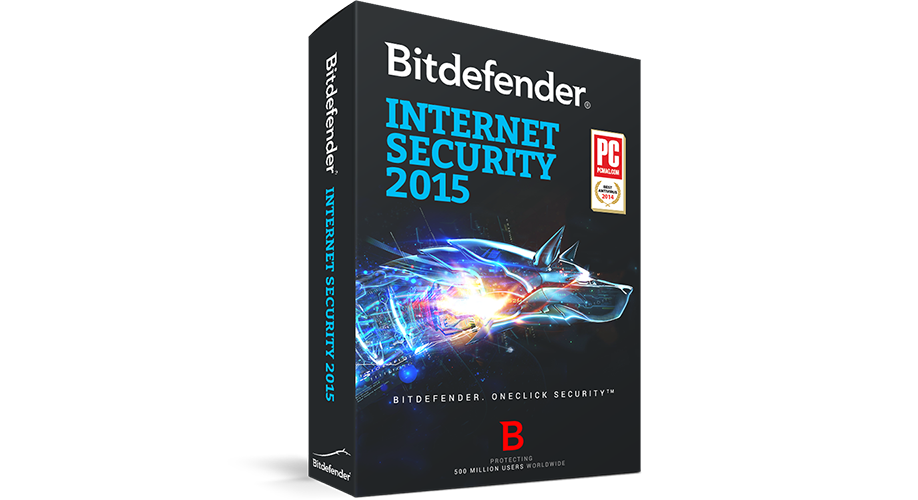
Cybercriminals are targeting popular software programs to find new victims, so it’s no surprise Windows is the most exploited operating system in the world. Despite security enhancements in recent versions, cybercriminals still turn to reverse engineering tricks or malicious third-party apps to bypass security features and exploit old unpatched vulnerabilities to get full access to your PC.
Bitdefender Internet Security 2015 helps users find and patch any software vulnerabilities that serve as a gateway for malware infection. It helps fight off all e-threats -- from viruses to identity thieves, and every trick in between. Designed for the best user experience, Internet Security offers full antimalware defense as well as other advanced safeguards including dedicated online banking and e-shopping security, highly secured online backup and sync, social networking protection and more. The program retails for $79.95 but you can try it completely free for six months. This is the very latest version of the software too, and the full thing -- not some cut-down, feature limited version.
Reasons to Try Bitdefender Internet Security 2015
- Offers best protection and best performance
- Easy to use and simple to understand -- manage security with one click
- Imperceptible, your PC will run extremely fast and silent
- Secures all your data online
- Helps recover your device if stolen
Bitdefender Internet Security 2015 builds on technology that won AV-TEST’s Best Protection award three years in a row. Bitdefender also achieved Best Performance thanks to its imperceptible scanning technology that ensures the fastest system speed.
Besides unrivaled antimalware protection, Bitdefender Internet Security 2015 includes the OneClick Optimizer to free up hard disk space as well as secure online storage and device anti-theft to help you find your computer if it’s lost or stolen.
Key Features
- OneClick Security
Engages security with a single click. Bitdefender OneClick Optimizer automatically speeds up your system and frees up disk space by running every known optimization. All in one click.
- Bitdefender Profiles
Prevents other applications from slowing you down when you Work, Play or Watch Movies.
- Autopilot
Provides a hassle-free experience by making optimal security-related decisions with no input needed from you.
- Two-Way Firewall
Monitors your Internet connections and prevents unauthorized access, even over a Wi-Fi network.
- Device Anti-Theft
Locks, wipes or even locates your laptop from any Internet-connected device you have at hand.
Start testing Bitdefender Internet Security 2015 now!
Simply click this link, and enter your email address. Bitdefender will email you the license. You will need to act swiftly though as the offer is only available for 72 hours.
-

Upgrading a laptop to Windows 10 is so easy a 10 year-old could do it
Publié: juin 1, 2015, 9:01pm CEST par Wayne Williams
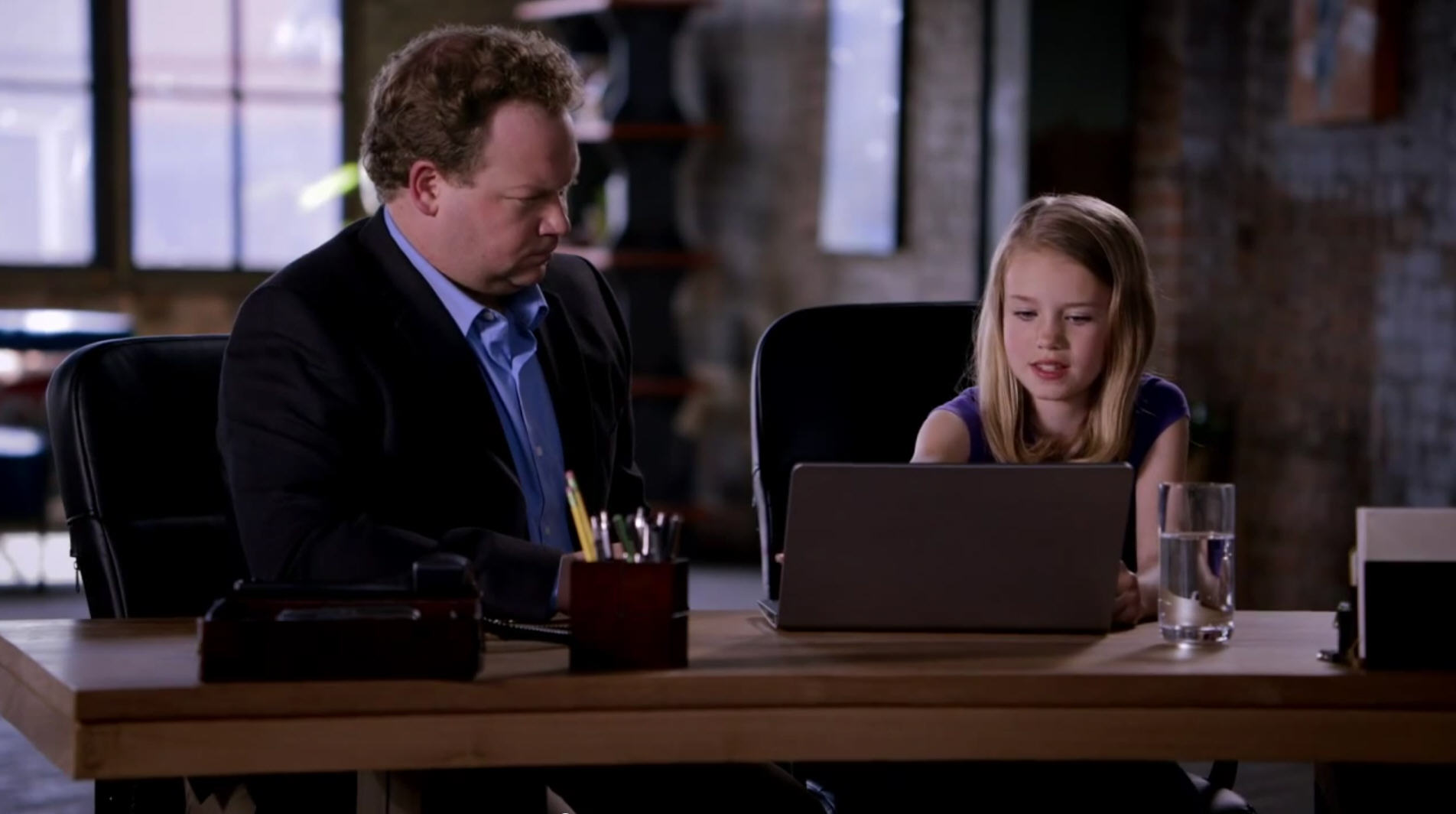
Microsoft wants you to use Windows 10. I mean, really, really, really wants you to use it. To this end it is pulling out all the stops, and removing as many barriers to adoption as possible.
The OS will be free to users of Windows 7 and 8.1 in the first year (check out the requirements here), but the process of upgrading has also been made as easy as possible. You just need to click the icon that pops up in the system tray to reserve your upgrade. But if you’re still unsure how simple upgrading will be, Microsoft has put together a video in which a bunch of 10 year-olds explain the process.
Naturally, they are explaining it to a grownup who doesn’t seem too sure how easy the whole process is, but quickly comes to see it’s just a matter of tapping on the screen a few times.
Yes, Microsoft is explaining how to upgrade to Windows 10 on a touchscreen laptop because, despite all the changes and concessions the company has made to its forthcoming OS, the software giant still really hates the keyboard and mouse.
Watch a group of 10 year-olds explain how to upgrade to Windows 10 here:
-

Will your PC or tablet run Windows 10? Check out the official system requirements
Publié: juin 1, 2015, 8:34pm CEST par Wayne Williams

Microsoft has started advertising Windows 10 to Windows 7 and 8.1 users, and has revealed that the OS will be available free from July 29, but that’s not the only information that has come to light today.
While the process of reserving your free Windows 10 upgrade is as simple as clicking the Windows icon that appears in the system tray, you’ll want to make sure your device is capable of running the new OS before you do anything. Fortunately, Microsoft has revealed the system requirements for Windows 10 today, and also explained which edition of the OS users can expect to receive. There are different versions of Windows 10, and Microsoft will keep upgraders on like-for-like editions. So if, for example, you are running Windows 7 Home Premium, you’ll receive Windows 10 Home.
The basic system requirements are as follows:
- Latest OS: Make sure you are running the latest version either Windows 7 SP1 or Windows 8.1 Update.
- Don’t know which version you are running? Check here to find out.
- Need to download the latest version? Click here for Windows 7 SP1 or Windows 8.1 Update.
- Processor: 1 gigahertz (GHz) or faster processor or SoC
- RAM: 1 gigabyte (GB) for 32-bit or 2 GB for 64-bit
- Hard disk space: 16 GB for 32-bit OS 20 GB for 64-bit OS
- Graphics card: DirectX 9 or later with WDDM 1.0 driver
- Display: 1024x600
Even if your device has the correct specs, there other factors that may affect its upgradeability, such as driver and firmware support, application compatibility, and feature support. It’s not a case of one OS for all, as there are some restrictions based on where you are. For example, Cortana is only currently available on Windows 10 in the United States, United Kingdom, China, France, Italy, Germany, and Spain. Music and Video stream through the Xbox Music or Xbox Video apps and that’s also available only in certain regions.
Windows Hello requires specialized hardware, two factor authentication requires the use of a PIN, Biometric (finger print reader or illuminated infrared camera), or a phone with Wi-Fi or Bluetooth capabilities, and to access Continuum you need to manually turn tablet mode on and off through the Action Center.
Microsoft also lists the other following caveats:
- The number of applications that can be snapped will depend upon the minimum resolution for the application.
- To use touch, you need a tablet or a monitor that supports multi-touch (more info)
- Microsoft account required for some features
- Internet access (ISP fees might apply)
- Secure boot requires firmware that supports UEFI v2.3.1 Errata B and has the Microsoft Windows Certification Authority in the UEFI signature database
- Some IT administrators may enable Secure Logon (Ctrl + Alt + Del) before bringing you to the log in screen. On tablets without a keyboard, a tablet with the Windows button maybe required as the key combination on a tablet is Windows button + Power button.
- Some games and programs might require a graphics card compatible with DirectX 10 or higher for optimal performance
- BitLocker To Go requires a USB flash drive (Windows 10 Pro only)
- BitLocker requires either Trusted Platform Module (TPM) 1.2, TPM 2.0 or a USB flash drive (Windows 10 Pro and Windows 10 Enterprise only)
- Client Hyper-V requires a 64-bit system with second level address translation (SLAT) capabilities and additional 2 GB of RAM (Windows 10 Pro and Windows 10 Enterprise only)
- Miracast requires a display adapter which supports Windows Display Driver Model (WDDM) 1.3, and a Wi-Fi adapter that supports Wi-Fi Direct
- Wi-Fi Direct Printing requires a Wi-Fi adapter that supports Wi-Fi Direct and a device that supports Wi-Fi Direct Printing
- To install a 64-bit OS on a 64-bit PC, your processor needs to support CMPXCHG16b, PrefetchW, and LAHF/SAHF
- InstantGo works only with computers designed for Connected Standby
- Device encryption requires a PC with InstantGo and TPM 2.0.
As to which edition of Windows 10 you'll receive, just check out the following comparison table:

Image Credit: Ariwasabi / Shutterstock
- Latest OS: Make sure you are running the latest version either Windows 7 SP1 or Windows 8.1 Update.
-

Run PC software on Raspberry Pi and Raspberry Pi 2
Publié: juin 1, 2015, 4:12pm CEST par Wayne Williams
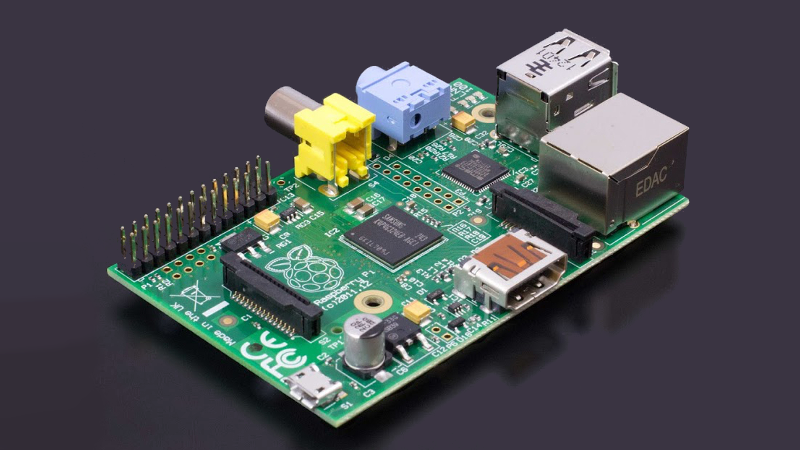
Last August, Russian technology startup Eltechs, announced virtual machine software which could run x86 apps on ARM-based Mini PCs. It required the host device to have an ARMv7 processor, and while the list of such hardware includes Raspberry Pi 2, the emulator wasn’t optimized for it.
Fortunately, that’s all changed as Eltechs has just improved Raspberry Pi 2 support in the latest version of its ExaGear Desktop software, and also made it compatible with older Raspberry Pi models.
"We are pleased to add support of Raspberry Pi devices in ExaGear Desktop and hope huge numbers of owners Raspberry Pi will enjoy our cutting edge virtualization technology and can use their favorite application on Raspberry Pi", said Vadim Gimpelson, CEO of Eltechs.
Eltechs describes ExaGear Desktop as "like QEMU but five times faster".
Users can run 32-bit Windows applications on the Pi provided they install x86 Wine.
ExaGear Desktop costs $9.95 for the Raspberry Pi edition and $14.95 for Raspberry Pi 2 version. There’s also an edition for ARMv7 devices priced at £19.95. Unfortunately there’s no trial version available.
-

Windows 8.x finally overtakes Windows XP again
Publié: juin 1, 2015, 12:18pm CEST par Wayne Williams

After months of not really doing much, Windows 8.x finally gained a decent amount of usage share in May, according to web analytics firm NetMarketShare.
This gain came at the expense of Windows 7 and Windows XP, which both lost share, resulting in Windows 8.x leapfrogging XP for the first time in six months. The last time the tiled OS was more popular than XP was in December 2014. At the time a run of usage gains lead me to predict it was on course to break the 20 percent barrier. Yeah, talk about being overly optimistic.
Windows 8 went from 3.50 percent in April to 3.57 percent in May, a gain of 0.07 percentage points. Windows 8.1 gained 1.79 percentage points in the same time period, going from 14.66 percent in April to 16.45 percent in May.
Windows 7 dropped from 58.39 percent to 57.76 percent, a slip of 0.63 percentage points, while Windows XP tumbled 1.33 percentage points and now sits on 14.60 percent. So Windows 8.x is actually 1.85 percentage points higher than XP at the moment, which given how badly the new OS has been performing as of late, will be a nice surprise for Microsoft.
As to how Windows 10 is doing, NetMarketShare gives the Insider Preview 0.13 percent of the desktop OS market. Microsoft has now confirmed a July launch date for Windows 10 and it will be very interesting to see what impact it has when it enters the market.
Photo Credit: Ariwasabi/Shutterstock
-

The evolution of the smartwatch -- from IBM WatchPad to Apple Watch
Publié: mai 29, 2015, 9:32am CEST par Wayne Williams
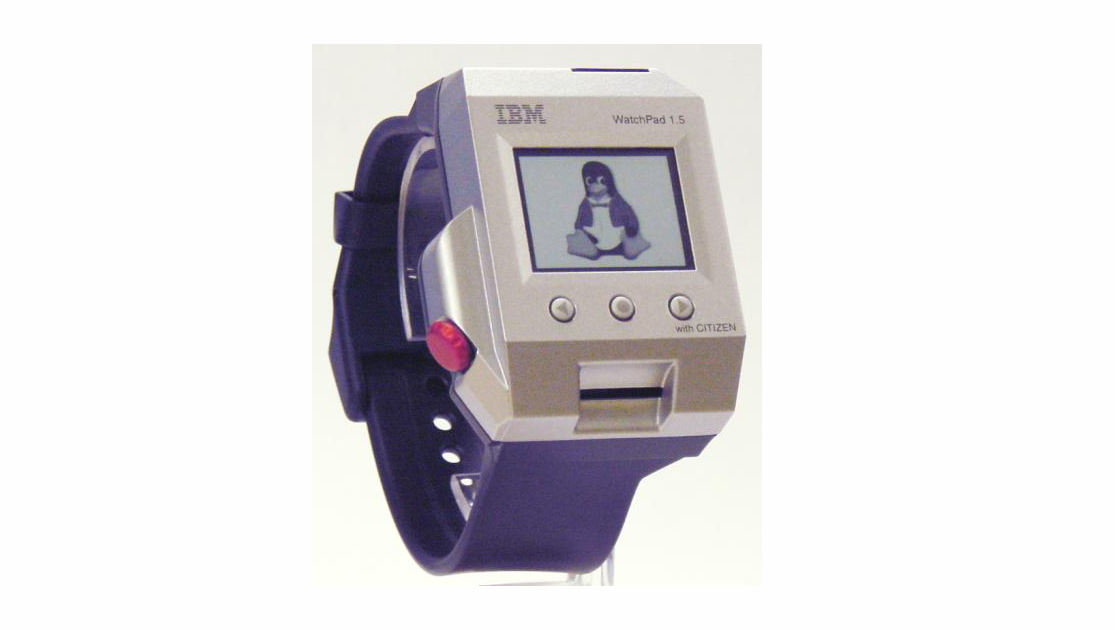
Apple certainly didn’t invent the smartwatch, although it does look set to finally bring the product into the mainstream. It performed a similar trick in 2010 when it made tablets popular by introducing the iPad.
Android watches have been available for a while, but even they aren’t the earliest example of wrist-based computing, nor for that matter is the Microsoft smartwatch my colleague Joe Wilcox wrote about recently. The history of smartwatches actually goes back some 15 years.
Watches2u has put together an infographic showing the evolution of the smartwatch starting with the IBM WatchPad way back in 2000. It also lists the current market leaders, based on unit sales in 2014 (Samsung is the clear winner, but whether it can hold off Apple remains to be seen).
See also: 24 hours with Apple Watch [First-impressions review]
The infographic also includes forecasts for wearable tech sales, shows how smartwatches are on the rise, and looks at how the tech is viewed by young professionals around the world.
You can check out the full infographic below.

-

YouTube celebrates its 10th birthday in style
Publié: mai 28, 2015, 9:04pm CEST par Wayne Williams
This is a big year for YouTube -- it’s ten years old, having first launched back in 2005. A month ago YouTube celebrated its first ever upload, "Me at the Zoo" but today is the video service’s official tenth birthday.
Naturally, Google couldn’t let the milestone pass without some form of celebration, and it’s created an A-Z infographic remembering some of its most famous moments. And, as you might expect, there’s a video as well, and even a web based trivia game.
It will come as no surprise to anyone that A is for Animals and Z is for Zoo, but in between are some fascinating YouTube facts, including that there are now over 1.5 million versions of Harlem Shake on YouTube, Gangnam style has racked up 11,000 years of watchtime, there are over 70,000 "It gets better" videos, and over 24 million dance-related clips.
Fascinating stuff.
Happy birthday YouTube. Here’s to the next 10 years.
-

Inbox by Gmail now open to all -- no invite required
Publié: mai 28, 2015, 7:25pm CEST par Wayne Williams
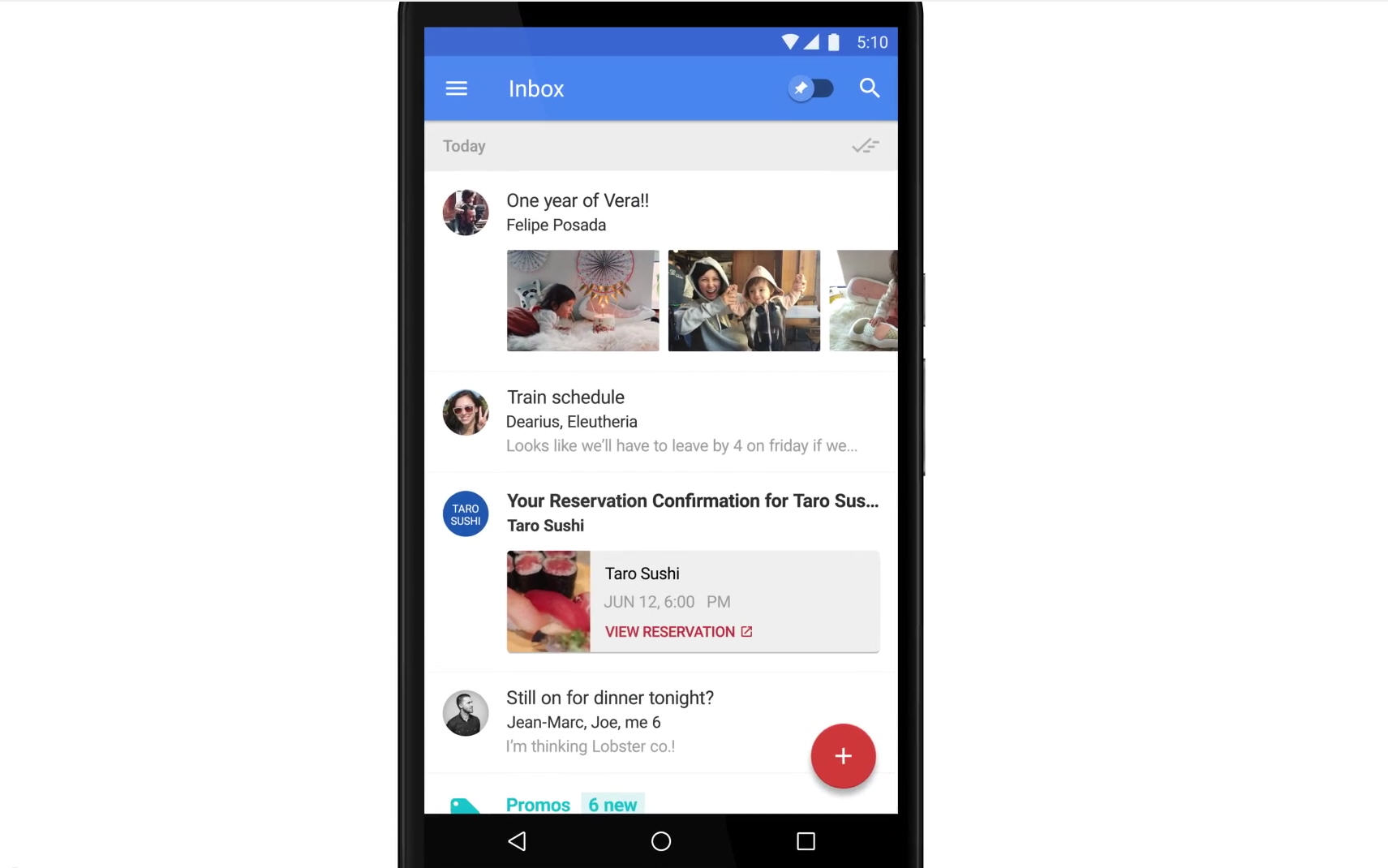
Last October, Google introduced a new email app, called Inbox by Gmail. It provided a different way of accessing the search giant's webmail service, and was designed to cut through the crap in a busy inbox and just present you with what was important. You could even snooze emails for a later time.
However, Inbox (like Gmail itself originally) was only available by invite. You needed to sign up and wait, or get invited by someone already using the service. Well today that changes, and if you haven’t already got it, and you want to try it, you now can as it’s open to all. But that’s not the only big news -- Google has made several major improvements to it.
If you’re going somewhere, Trip Bundles will lump together information relating to your journey, including flight times and hotel reservation info.
You can now undo sending messages (a feature I’ve long loved in Gmail), make deleting a message the default swiping action, and add custom signatures to messages too.
If you’re using Google Keep, reminders will appear in Inbox, and when someone emails you a task, you might be prompted to create a reminder.
Inbox by Gmail is available to download for Android and iOS and you can get it from here.
Do you currently use Inbox, or will you be tempted to do so?
-

Watch the Google I/O 2015 keynote here live
Publié: mai 28, 2015, 12:21pm CEST par Wayne Williams
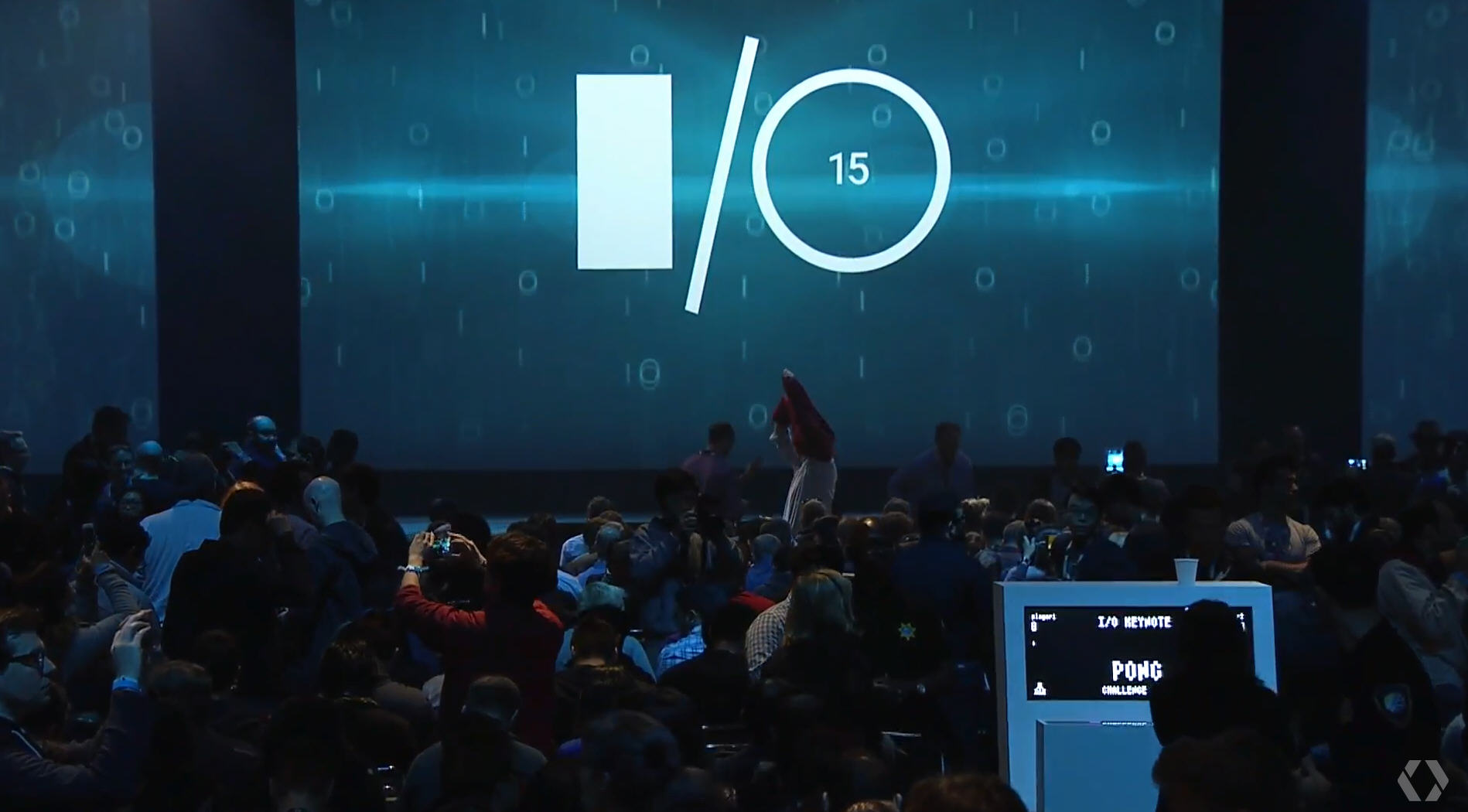
Google’s annual developer conference kicks off in San Francisco today, starting with a keynote which the search giant traditionally uses to make big announcements. Last year Google showcased Android "L" (which later became Lollipop), Android Auto, Android TV, and Android Wear, as well as a number of updates to Google Services.
So what does the Google I/O 2015 keynote have in store? During past Google I/O conferences Google has unveiled the next version of Android, and there’s every reason to expect we’ll see Android "M" announced this year. It’s possible we’ll see the phoenix-like Glass 2.0 make an appearance too. Google does like to grab headlines after all.
It’s long been rumored that the firm will be spinning off the photos feature from Google+ into its own product, expected to be called Google Photos. A standalone storage and photo sharing service makes a lot of sense, as while the feature in Google+ is great, it isn’t widely used. What this might mean for the future of Google+ remains to be seen.
Google is reportedly working on a new OS codenamed Brillo which is designed to run on low-powered IoT devices, so we might see something of that during the keynote too.
The Android Pay API is expected to be launched as well.
All in all it promises to be an exciting keynote and things kick off at 9.30 am PDT/12.30 pm EDT/17.30 BST. The keynote is expected to run for approximately 2 and a half hours.
If you don’t have a ticket and you’re not in San Francisco, don’t worry you can tune into the keynote right here.
-

Piper.nv: An impressive night vision home security system [Review]
Publié: mai 27, 2015, 3:48pm CEST par Wayne Williams

Home security is getting ever smarter, and Piper.nv (the more expensive night vision version of Piper) is an excellent example of this. It’s a smart camera that you access and control via your smartphone (iOS or Android). It displays 180-degree 1080p HD live video, and automatically switches to night vision when the room gets dark.
There’s much more to Piper than just a camera though. It comes packed with features to ensure your home stays safe when you’re asleep or away, and it’s very easy to set up and use.
Piper is a 6.5 x 3.5 inch mains powered device, with a battery backup (3x AA batteries) so it will continue to work in the event of the power going off, or someone unplugging it. The battery compartment is located behind the stand, so it’s easy to access should you need to, but not immediately obvious to any would-be tamperers. It can sit on the side or be mounted on a wall.
As well as providing you with a live feed, Piper can detect both motion and sound, and notify you when something out of the ordinary happens. There are three customizable modes -- Stay, Away, and Vacation -- that you can switch between in the Piper app, and the device can alert you to potential issues by phone call, text message, email, or push notifications. It can also alert friends and family members who you add to your "trusted circle".
There’s two way audio built in as well, so you can listen in to any potential intruders and also speak to them. In testing, there was quite a delay between the audio being transmitted and received -- and that was just from room to room, which could make for quite comical attempts at communication. I have a fast and fairly solid Wi-Fi connection, so this was a little disappointing.
There’s also a built-in 105-decibel siren that can be set to go off if motion or sound is detected while you are away, and you can also trigger this siren yourself by hitting the panic button on the app. If you’re wondering how loud 105-decibels is, I can tell you it’s ear-piercingly loud. Having set it off from a matter of feet away, my ears were still ringing a few minutes later. My wife, who was outside at the time of my impromptu testing, didn’t hear a thing, but I’m sure she would have if I’d have left the alarm on long enough. While your neighbors might not hear the alarm, it’s definitely loud enough to scare any intruders away. You can disable the siren if you wish, or delay it.
The app dashboard lets you change modes, view Piper’s status, see any alerts and view any recorded videos. It also gives you access to Settings and displays the external and internal house temperatures. A Vitals tab displays graphs showing temperature, humidity, ambient light, sound, and motion over a 48 hour period. The Rules tab is where you set the settings for the different modes (Stay, Away, Vacation and Notify Only). There are rules for "If motion is detected…", "If sound is detected", and "If the temperature changes…"
The Live Video tab displays the feed from Piper and lets you zoom in and out and switch between standard and quad views. With the latter you can look at four different parts of the room at once. Night vision can be turned on or off, or set to auto, and you can adjust the brightness of the feed using a slider. You can also activate the microphone here.
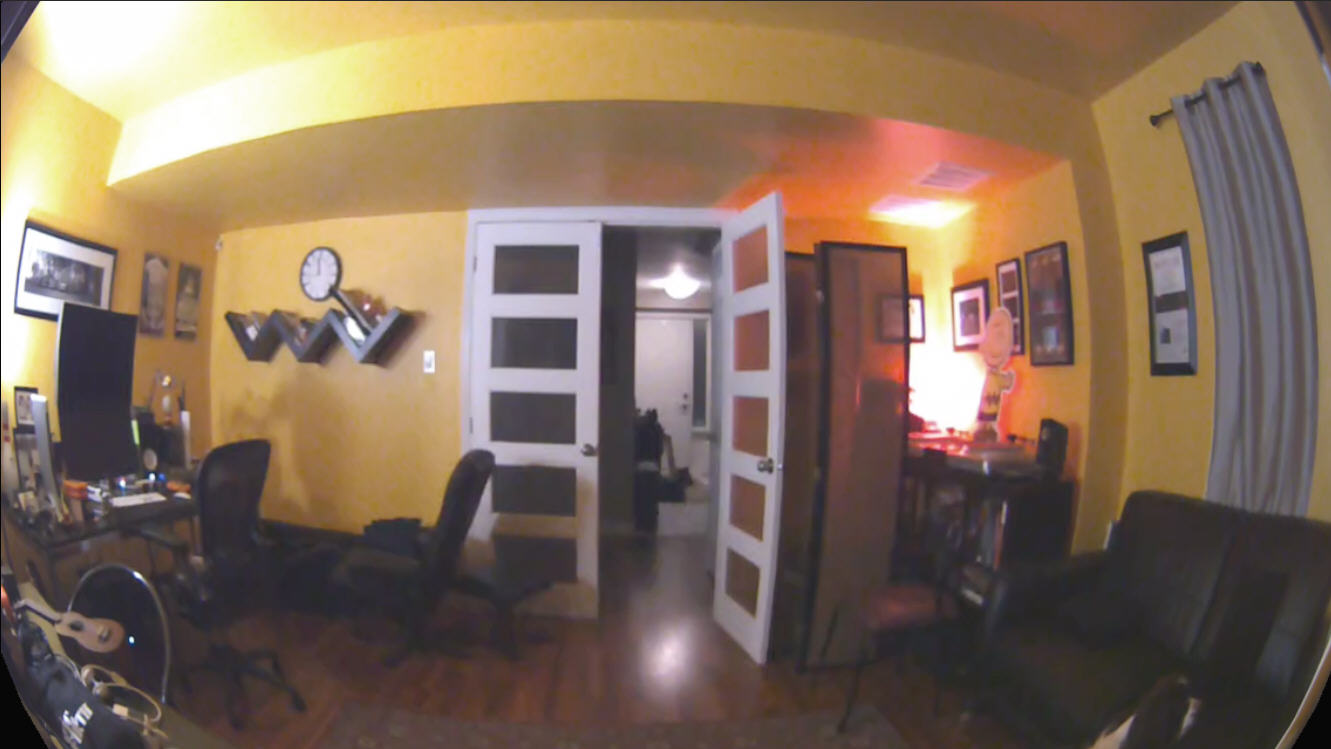
You can have up to five Pipers in your home, and the device is also compatible with a range of Z-Wave home automation accessories that will enable you to control lights and appliances remotely (scheduling them to go off at a set time or based on environmental factors such as light levels changing, or when you open your front door). I tried Piper with two Z-Wave Plug sockets (lamps connected to both), and also a door/window sensor. It works really well. These can be added, removed, and turned on or off.
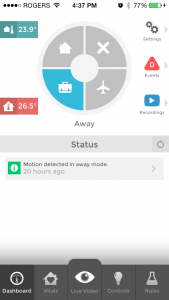 There are lots of settings, which allow you to configure Piper to your personal situation. You can adjust the sensitivity, tell Piper if there’s a pet at home (so it won’t alert you when a dog or cat wanders past), turn weather alerts on or off, and so on.
There are lots of settings, which allow you to configure Piper to your personal situation. You can adjust the sensitivity, tell Piper if there’s a pet at home (so it won’t alert you when a dog or cat wanders past), turn weather alerts on or off, and so on.Piper is a self-monitoring system -- as opposed to a central monitoring system -- which means it’s down to you to keep an eye on things, and call the police yourself, should you need to. The benefit is there’s no monthly fee to pay, just the upfront cost of the device(s).
The connection between Piper and my iPhone failed a couple of times and was tricky to re-establish (not something you can do remotely), which was a little worrying. I would also like to see the option to control it via PC or Mac, or just over the web. Maybe this will happen eventually.
That said, this is a stylish home security system with much to recommend about it. You can use it as a straightforward home monitor, and expand its capabilities as and when required.
Piper.nv is priced at $279/£229.99, and can be purchased directly from getpiper.com or from Amazon in the UK.
-

Everything you need to know about Microsoft's Cortana on iPhone and Android
Publié: mai 26, 2015, 4:28pm CEST par Wayne Williams
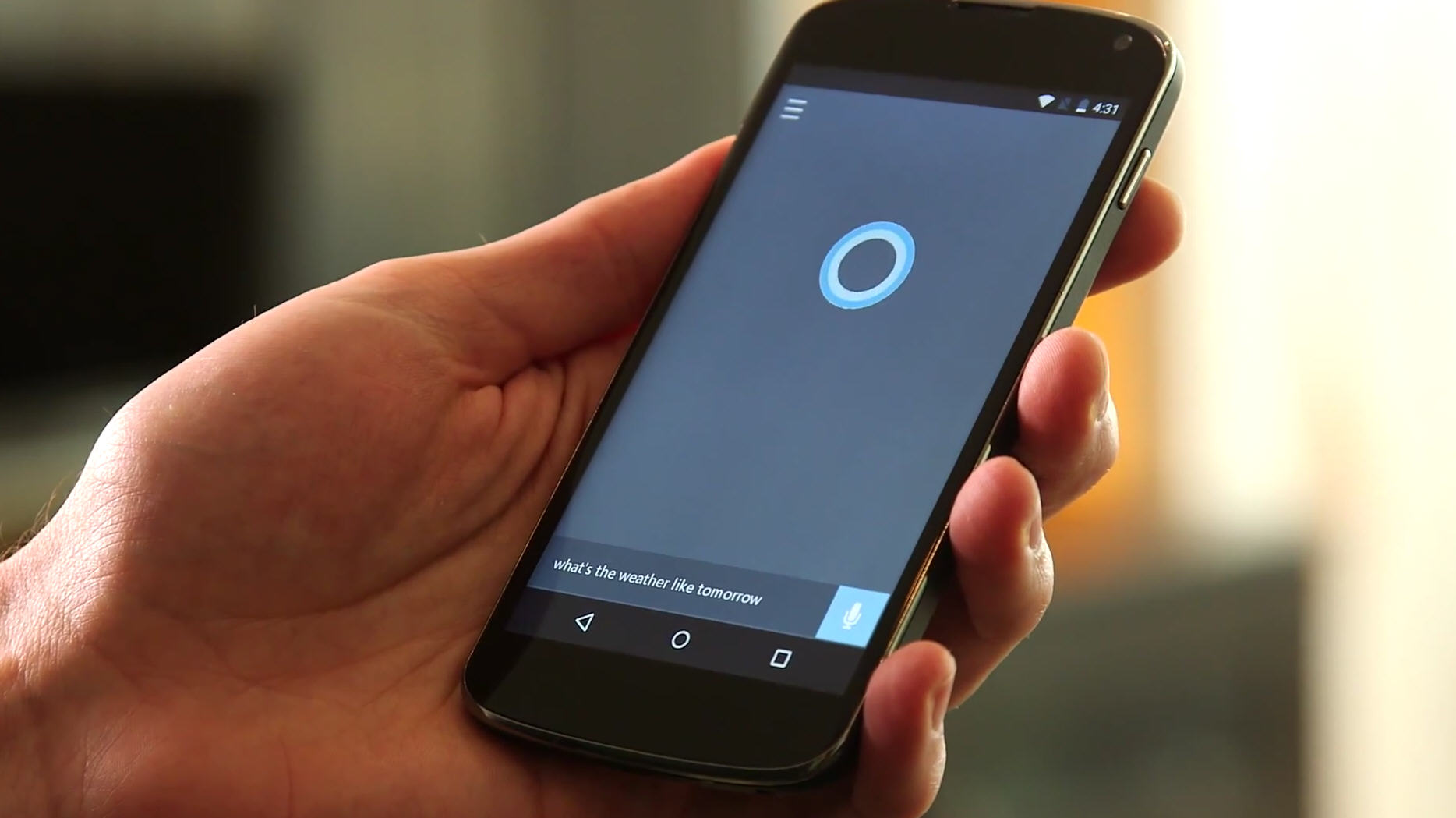
The newly announced Windows 10 Phone Companion App will let you link your Android or iOS devices to Windows 10, but that’s not all. It will also give users of those rival mobile operating systems access to Cortana. I’ve used both Siri and Cortana, and I much prefer Microsoft’s virtual assistant over Apple’s. Having access to both (or Cortana and Google Now, in the case of Android), is great news for consumers.
To make use of Cortana you’ll need to have Windows 10 installed on a PC, and the Cortana app for iOS or Android. These isn’t available yet, but Windows Insiders will be able to try out the Phone Companion app in a future Windows 10 Insider Preview Build which is set to arrive in the coming weeks.
The Android app will arrive at the end of June, and the iOS version later in the year.
Although Cortana will be much the same as she is in Windows 10 and on Windows Phone devices, she won’t have all of the functionality. Joe Belfiore corporate vice president, Operating Systems Group at Microsoft says:
The Cortana app can do most of the things Cortana does on your PC or on a Windows phone. You can have Cortana remind you to pick up milk the next time you’re at the grocery store, and then your phone will wake up and buzz with the reminder. You’ll be able to track a flight using Cortana on both your phone and your PC, and get the updates on the device that you’re on so you don’t miss anything. Everything in Cortana’s Notebook will show up across all your devices and any changes you make on one device will be reflected when you use Cortana on any of your other devices. The Cortana companion app will help you complete tasks you begin on your PC wherever you are, on your phone.
"Most of the things"? So what's missing? Belfiore explains:
Although the functionality will be very helpful, because it’s "just an app" there will be certain things that Cortana does on Windows phones that won’t work on Android devices or iPhones. Some features require access to the system that aren’t currently possible with iOS or Android, so things like toggling settings or opening apps won’t initially be available in the Cortana companions for those platforms. Similarly, the ability to invoke Cortana hands-free by saying "Hey Cortana" requires special integration with the device’s microphone, so that feature will be limited to Windows Phones and PCs.
So Windows Phone users will still have the better Cortana experience initially, but for how long remains to be seen.
-

Windows 10 Phone Companion app is a game changer -- but will it kill Windows Phone?
Publié: mai 26, 2015, 3:46pm CEST par Wayne Williams
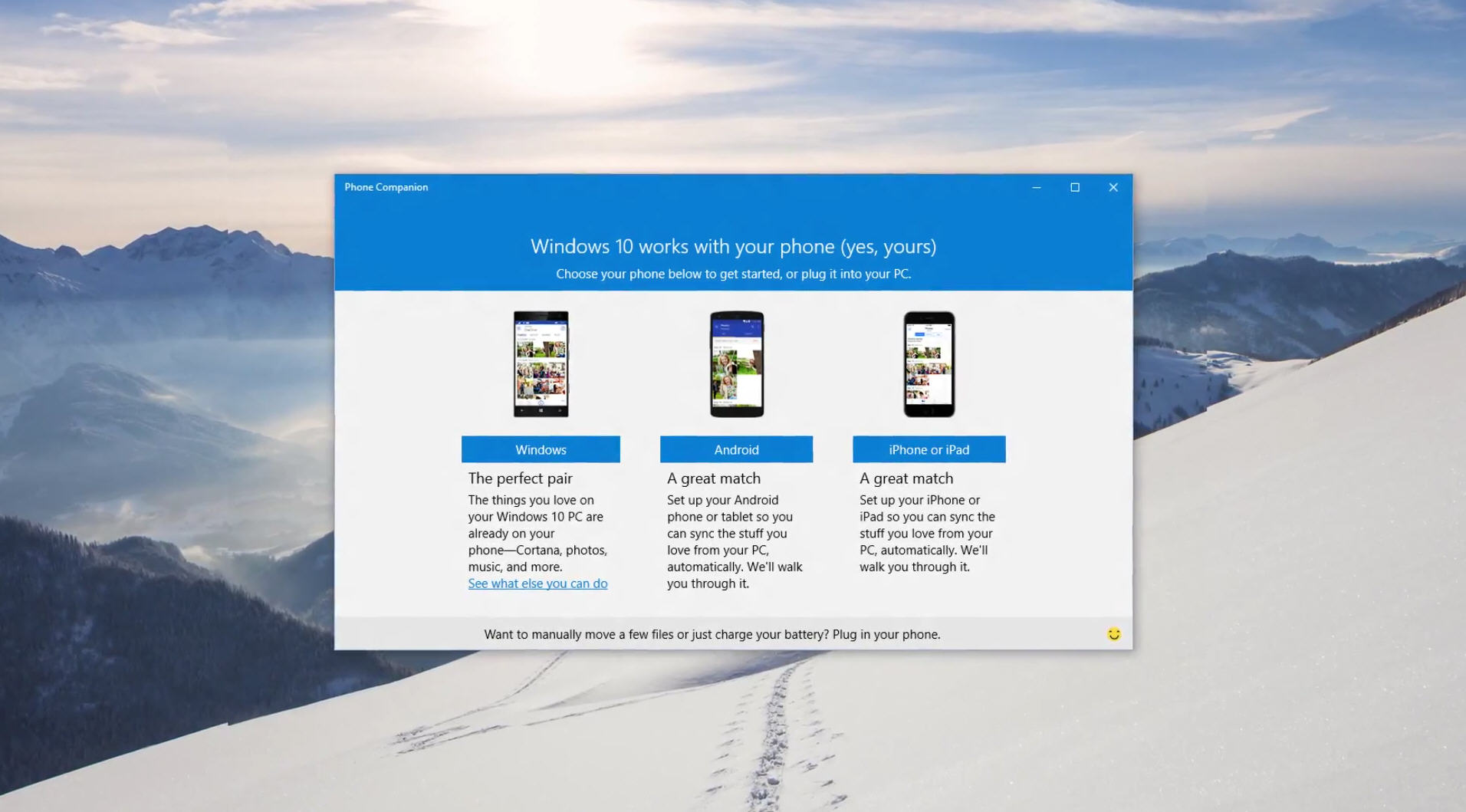
Windows 10 will run on a range of compatible devices, including PCs, hybrids, tablets, phones, Xbox One, HoloLens, and IoT hardware. Microsoft might be striving for ubiquity, but it knows when it comes to mobile, that the vast majority of people will continue to use Android or iOS phones and tablets.
Announced today, Microsoft’s Phone Companion for Windows 10 App, will let those users access content from whatever device they choose, and also give them access to Cortana, Microsoft’s virtual assistant.
As Joe Belfiore corporate vice president, Operating Systems Group at Microsoft says, "Windows has always been great at connecting your PC to all the devices in your life and with Windows 10 we're going to take that step even farther. With Windows 10 you can expect your Windows 10 PC to connect and work great with the three year old printer you have, you can expect Windows 10 to connect and display your content on the brand-new, Miracast TV you just bought and now we're adding to Windows 10 a phone companion that will connect your windows 10 PC experience to whatever smartphone you have. A Windows Phone, an Android Phone, or an iPhone".
Sounds impressive, but what does that actually mean?
Windows 10 will come with a Phone Companion app that you can launch directly from the Start menu. This will present you with a screen that will let you get your phone set up to work with the new OS. You’ll be able to view photos taken with your Android or iOS device directly on your PC, listen to songs stored anywhere via OneDrive, access OneNote content, Skype, work in Office, and get Cortana on your phone or tablet too. All you have to do is install the relevant apps on the device(s) of your choosing.
And yes, that’s right -- Microsoft is bringing Cortana out as an app on rival platforms. It works exactly the same way it already does on Windows Phone, and in Windows 10.
Microsoft is still pushing its own mobile platform of course, as Belfiore says, "If you have a Windows Phone there’s almost nothing you need to do because Windows phones are already built to include all the things that make them connect great to a Windows 10 PC".
The Phone Companion App is, I think, a smart move. It will make upgrading to Windows 10 even more essential, and Microsoft is showing once again (as it did when it launched Office for iOS), that it is prepared to go to where the users are, not just expecting them to come to it.
The question is, where does this leave Windows Phone? Increasingly Microsoft’s mobile devices have fewer and fewer unique selling points, and giving Cortana to Android and iOS users seems to me to be giving away the one major benefit the platform still really has. Of course Microsoft will be gambling on Windows 10 users liking the OS so much they’ll choose it as their mobile OS too, but that really is a huge bet.
What you do you think this latest move?
-

Windows 10 Build 10122's AMD problem fixed -- new release now safe for all to install
Publié: mai 22, 2015, 9:44pm CEST par Wayne Williams
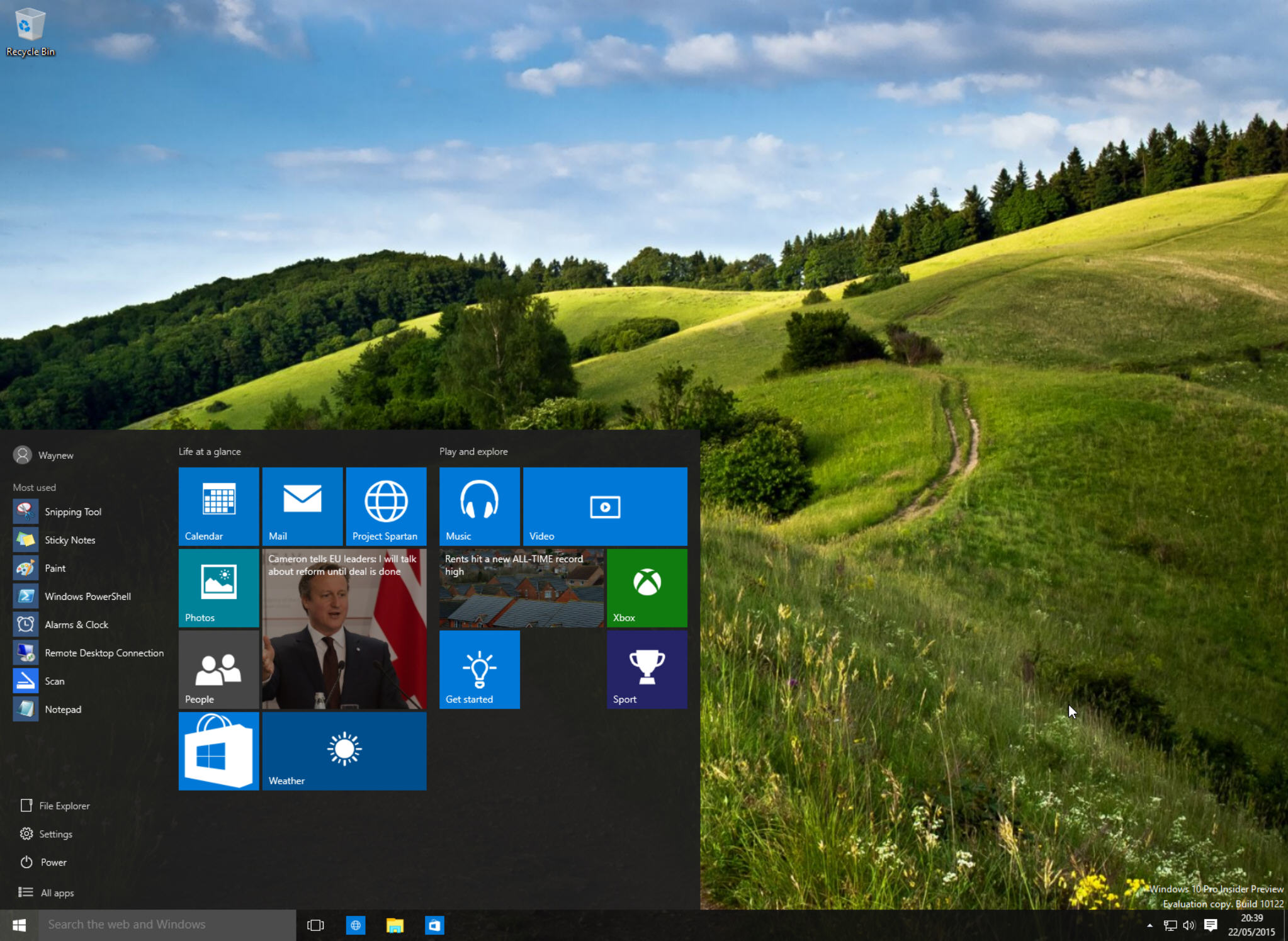
When Microsoft released the latest Windows 10 build earlier in the week, there was one big known issue which will have put some people off updating. Windows Insiders on systems with AMD GPUs were warned that the new build could lead to stability issues, and problems with Windows Edge (or Spartan as it’s still branded in the current build).
Microsoft did say, however, that AMD was working on new drivers, and the good news is the problem appears to have been fixed.
Microsoft’s Gabe Aul has confirmed via Twitter that AMD has "released some new drivers which should work great with build 10122".
The fix is available to Insiders on the Fast ring and can be installed via Windows Update. Just go to Settings > Update & Security and check for updates. It’s not currently available for me, but it should start appearing very soon.
See Also: How to install Windows 10 Insider Preview on Oracle VirtualBox
Hey #WindowsInsiders, AMD has released some new drivers which should work great with build 10122. Check WU for updates.
— Gabriel Aul (@GabeAul) May 22, 2015
The fact that this problem has been handled speedily does suggest that the new build might be heading for the Slow ring (and will therefore also be available as an ISO download), which is good news. I’ve found it to be a stable and much improved release.
-

24 hours with Apple Watch [First-impressions review]
Publié: mai 22, 2015, 3:41pm CEST par Wayne Williams
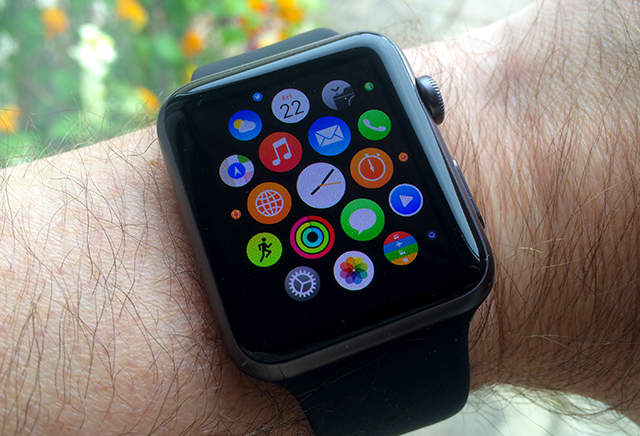
After Tim Cook demoed the Apple Watch at the Spring Forward event two months ago I declared I should want an Apple Watch -- but I don't. Despite being an iPhone owner and a watch wearer, I felt the new device was an "unfocused mess" and features like talking to your wrist and sending drawings to fellow Watch-owning friends just didn’t appeal. They were something only a ten year old would be interested in.
The way Watch was being retailed -- online only, with crazy delays -- didn’t impress me either. In fact, I called Apple’s launch a brand-damaging botch job. I still stand by that statement, but here’s the thing. Despite all that Apple Watch negativity, after I went into an Apple Store to look at the device I ended up buying one. I know, talk about easily swayed.
The dispatch date for my device (which had to be ordered online, remember) was given as July, but my purchase actually arrived yesterday morning. I received multiple emails and text messages in advance, so I was ready for it.
I opted for the 42mm Apple Watch Sport in Space Gray with the Black Sport Band. I would have expected to have chosen an Apple Watch with a metal band, but actually up close they didn’t really appeal. I also didn’t fancy paying more than I had to for a device which I wasn’t completely convinced I’d like, and which clearly isn’t as polished as it will be in time.
This being Apple, the Watch comes packaged smartly in a plastic case inside a long thin cardboard box. You get a magnetic charging cable, USB adaptor, an additional half strap (for thinner, or ladies’ wrists) and the Watch itself.

Getting started is a matter of turning the device on, waiting for it to load (which takes quite some time) and then pairing it with your phone using the Apple Watch app that the tech giant forced on all iPhone users in a previous iOS update. You can pair it using your phone’s camera (point it at the pattern on the Watch’s screen) or manually by entering a code.
Once paired, it will look for Apple Watch versions of apps on your phone and install them. You can choose which apps you want, and uninstalling unwanted apps is easy enough and done on your phone. I knew there was an update pending, so I installed this before going any further. The update couldn’t be applied without connecting the Watch to the charger first (you just lay the back onto the circular magnetic disk) as the remaining charge wasn’t enough.
Once updated, I secured the device with a passcode (Watch automatically locks when you take it off your wrist), and began exploring what it has to offer.
I like the interface, but it’s not what I’d call intuitive. It’s easy enough to work out what the digital crown does (acts as a home button, and is also used for scrolling and summoning Siri), and launching apps is straightforward, but working out how to change the default watch face isn’t quite so obvious (you press down on the existing face, and a selection of alternatives pops up). The quick start leaflet does explain how to do this, and all of the other common tasks, so as long as you bother to read it, which obviously I didn’t.
First Impressions
The device itself is quite chunky, and not particularly stylish, although it's far from ugly. The screen is blank until you move your wrist to look at it, and the time, or the app you were last using, pops into view. You can choose which apps to have as Glances (the information you require is shown "at a glance"), and these can be accessed by swiping up from the watch face screen. The first Glance screen shows you that Watch is connected, and lets you toggle airplane mode, do not disturb or silent modes on or off, and also ping your phone, handy if you’ve misplaced it. Scrolling right takes you to the music player (control the music on your phone), followed by the heart rate monitor, then the battery remaining indicator (you can switch to power reserve here if the juice is too low), the activity monitor (which shows Move, Exercise and Stand progress), the calendar, weather, maps, world clock, and any other glance-friendly apps you’ve installed.
If you don’t want to move your wrist to see what’s on screen, you can set it so a tap will wake things up.
Most of Watch’s functionality is linked to your phone, which is a smart move as it means you can do more with the device. If Watch can’t handle something you can handoff to the phone, and the larger device will take it from there. Some of the Watch apps are basic, but useful. The Camera app acts as a remote snapper for taking photos with your phone, and there's a 3 second delay option to avoid you having lots of shots with your wrist in front of your face, while Photos lets you view images on your phone, but seemingly only ones you've favorited.
Despite thinking using the watch to place calls, and asking Siri questions, would be stupid, it’s actually quite useful. I can ask Apple’s personal assistant to play a song as I’m driving just by saying "Hey Siri" and speaking my request. The whole process is quite slow, but you soon get used to that. The two phone calls I’ve made with Watch so far have been clear enough, and the process has worked well. How often I’ll use this feature remains to be seen (my phone already syncs with my car, so I can make and place calls while driving without ever touching the handset anyway, and the calls made that way are clearer). If I ever find myself dangling by my fingertips from a bridge, I could use Watch to call for help via Siri, so that's good to know. I’m joking, obviously, but I’m sure there will be times when it will be easier to take and make calls using the watch and not my phone.
One thing I’ve realized in the time frame I’ve been using Watch is I get way too many notifications throughout the day. During a business meeting my watch beeped and tapped my wrist relentlessly, informing me of texts, emails, health related details, and other things. Seeing what a notification is for means glancing at your wrist, which makes it look as if you have somewhere urgent to be! There’s currently no app for Facebook -- which is a major absentee -- but you still get notifications of comments on the social network. Obviously I get all the same notifications on my phone, but they aren’t as pressing as ones delivered to your wrist. I’ve cut down the notifications I receive now and it’s much better. I’ve already become very conditioned to checking my wrist the second I get an alert, which is impressive given I’ve not had the device all that long.
Apps can be glacially slow, which is another downside. Better get used to that spinning wheel... Maps take an age to load when you’re out and about, Feedly isn’t speedy, and messages in the HipChat chat app I installed update quite slowly. Responding, by voice, to messages in HipChat requires you to be quite quick before the screen shuts off, but it's an art that's easily mastered.
Assault on Battery
Battery life is unquestionably an issue and I’ll have to get into the habit of charging the device every night as I do with my phone. Talking of which, my phone’s battery life seems greatly reduced now Watch is connected to it.
Naturally I’ve not had much time to learn everything Watch has to offer, and the experience has been a bit of a roller coaster ride. I’ve enjoyed much of what it has to offer, but then been disappointed occasionally by Watch’s limitations. There’s are no killer apps, and I’ve yet to find any I really want to download, which is disappointing. The lack of a Facebook app is very surprising (I was aware of this prior to buying the device, fortunately), and its absence will definitely limit Watch’s usefulness for some.
I think overall I will grow to like Watch, maybe even love it, but it’s going to be about working out how it fits into my life, and understanding, and tolerating its shortcomings. Just because it can perform a task, it doesn’t mean it should. Some actions, and apps, will always be better on the phone. Watch complements the iPhone, but it certainly doesn’t replace it. Not even close.
Every review ever talks about Watch having potential, and that’s unquestionably true. What it can do right now is great, but what it will be able to do in the future will be amazing.
Obviously 24 hours isn’t long enough to formulate a proper opinion, but I wanted to get my initial thoughts out, and then report of my experiences after I’ve lived with Watch for a far longer period of time. Will I love it? Will I have grown to hate and resent it? Or will it simply have become part of my daily tech life without inspiring either extreme? We shall see...
Photo Credit: Wayne Williams
-

Windows 10 Build 10122 arrives, here's what's new
Publié: mai 20, 2015, 8:11pm CEST par Wayne Williams
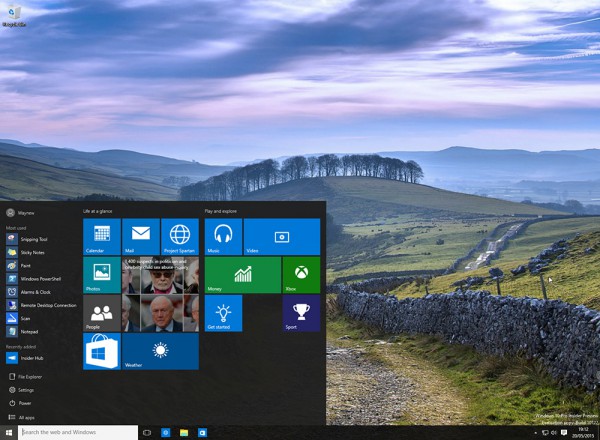
There are risks involved with running any early versions of programs. They’re not finished, sometimes they are far from finished, and could be riddled with bugs. You might not encounter any problems, or then again you might. You take your chances. If you’re a Windows Insider, you get to try Windows 10, in the knowledge you might encounter issues with the OS. If you’re in the Fast ring, that’s even more likely.
The latest build being rolled out to Insiders now being a good case in point. Build 10122 has a known issue with AMD GPUs which causes Microsoft Edge (or rather Spartan, as it's still branded in this build) to crash frequently. Microsoft could have held this back until a fix was available, but Windows Insiders voted for it to be released, and so here it is. When the next new build arrives on the Slow ring, this issue should have been fixed (AMD is working on new drivers), so if you have a PC with an AMD GPU you may wish to skip this build, avoid using Edge, or try the OS in a virtual environment, using VirtualBox. So that’s the main problem with the new build, but what about changes and improvements?
Well, both the Start menu and Continuum have been improved. File Explorer and Settings have been moved to the bottom left, next to Power and All Apps. This, Microsoft says, is for "better symmetry" and who doesn't love better symmetry?
The right-click context menu has been updated, and toggling between the Start menu and Start screen views is now done via the new Start settings page found under Personalization Settings. If you prefer the Start screen you can enable it by going to Settings > Personalization > Start. If you're running the OS in Tablet mode, you'll discover a couple of improvements, most notably the left hand pane is now collapsed, and tiles are larger, more like they are in Windows 8.1.
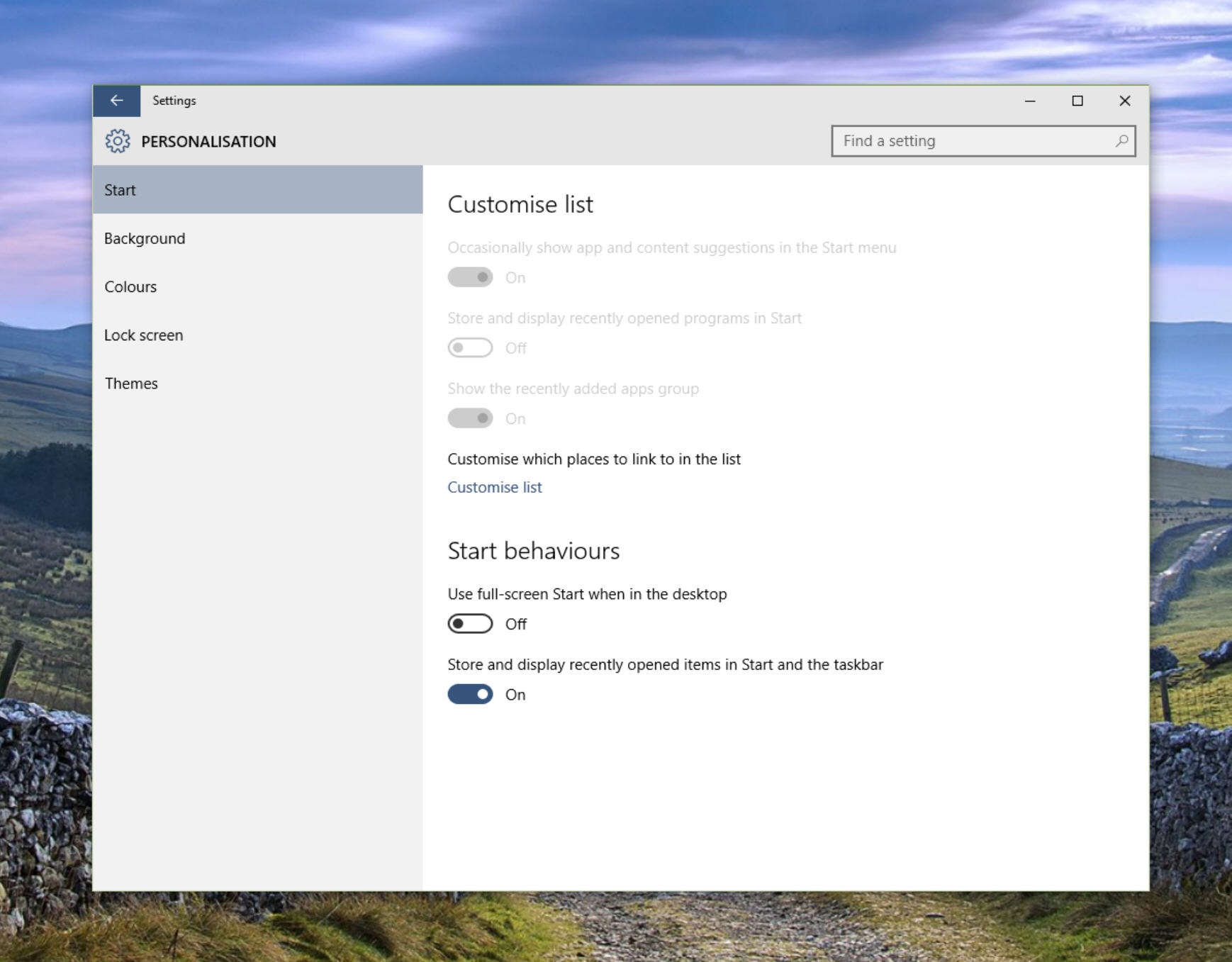
Assuming your PC does haven't have an AMD GPU, and you can run Microsoft Edge without problems, you'll see there's the new Tab Page in place now. This page, which first made an appearance at Build, can be customized in Settings. Other additions include a private browsing mode (InPrivate) and the ability to pin websites to Start, and a history view. An audio icon will now appear on noisy tabs, making tracking down pages playing audio or video in the background much simpler. The Chakra engine has been updated in this version too. Shame the name hasn't. Come on Microsoft, how difficult is it to find and replace "Spartan" with "Edge"?
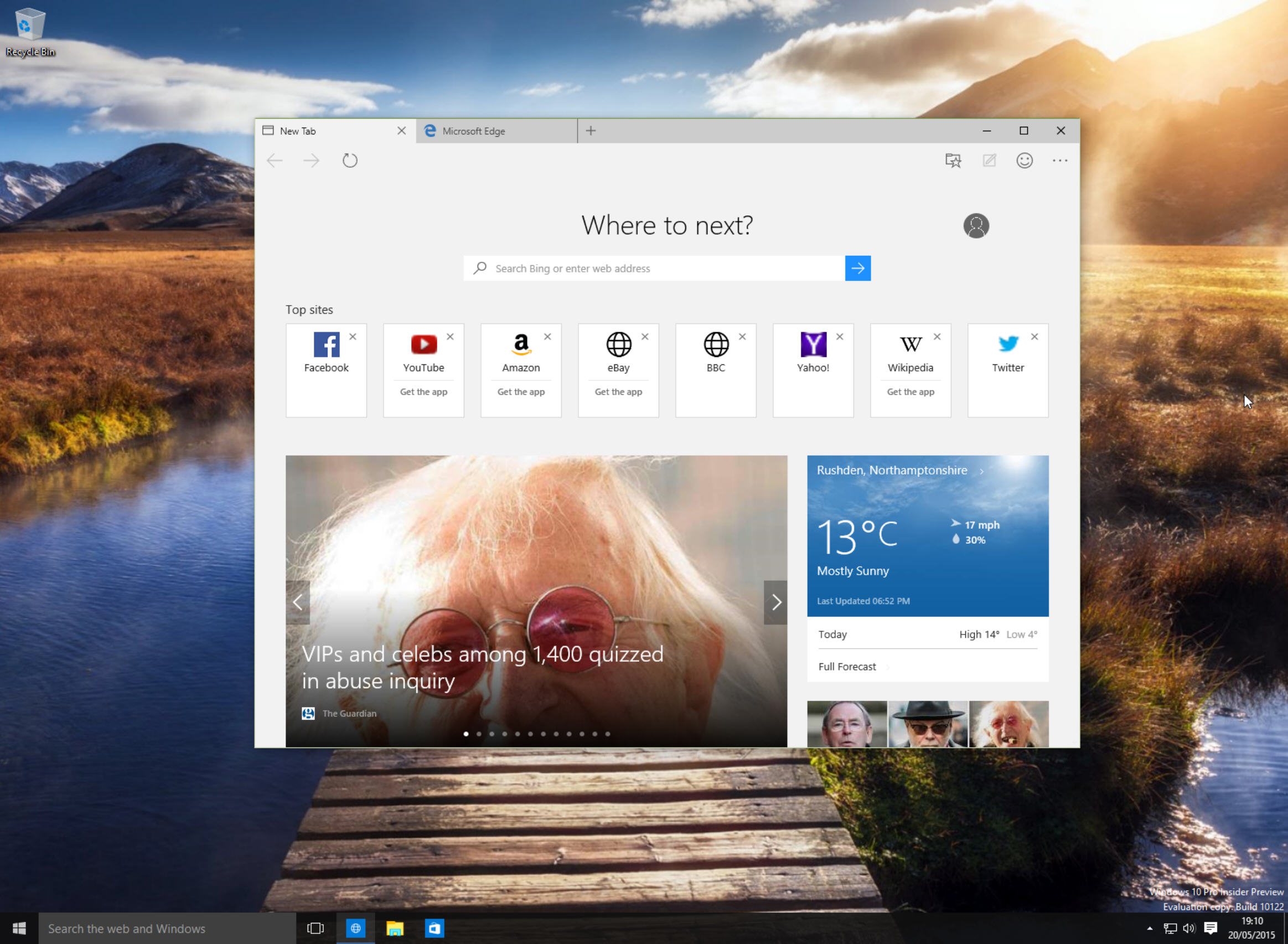
Changes have been made to the way Windows 10 handles defaults, making it easier to choose the programs or apps you want to open certain types of files. When you upgrade from Windows 7 or 8.1, you'll be given the chance to upgrade your default to the new Universal Apps that come with Windows 10.
As you'd expect, a large number of bugs have been squashed in this build, but plenty remain. Aside from the AMD/Edge issue, Microsoft notes the following known issues:
- Upgrading to this build on certain PCs may fail and roll back to the previously installed build with error 0x80070057 -- 0x20007. This is a bug where too many device INFs are being migrated and hitting an internal limit. Possible workaround is to use Disk Cleanup to clean up system files and choose Device driver packages, Previous Windows installations and Temporary Windows installation files. You may also need to remove unnecessary peripherals and remove them from Device Manager and trying the upgrade again.
- In this build there is a bug that may cause issues with Cortana speech. If you are experiencing problems with speech recognition, or are getting errors when trying to speak to Cortana, please visit this thread on the Windows Insider Program forum for assistance in recovering from this bug.
With this being a Fast ring release, there will be no ISOs available (that’s only for builds stable enough for the Slow ring), so the only way to get it will be to update Windows 10 through Update and Security. If you’re not already on the Fast ring, you can switch to it through Advanced Options. The new build is still rolling out slowly, so you might need to wait a while before it gets to you.
If you try it, please let us know what you think about it in the comments below.
-

Windows 10's success hinges on apps, and overcoming developer apathy
Publié: mai 20, 2015, 5:10pm CEST par Wayne Williams

It’s no secret that Microsoft has an app problem. The Windows Store is full of unexciting knock-offs, and it’s rare for quality releases to appear there these days. While many Windows Phone devotees will claim the "app gap" is a myth, and the only apps Microsoft’s mobile platform doesn’t have are rubbish ones that no one wants ("thousands of games and flashlight apps" as I’ve seen iOS’s superiority dismissed previously), that’s simply not true.
Microsoft is more than aware of the problem, and past efforts to get developers to port their apps to its ecosystem simply haven’t worked. That’s why with Windows 10 Microsoft is doing things differently. Universal apps can run on any Windows 10 device, from PCs to phones, and Microsoft has also made it incredibly simple for developers to port Android and iOS apps to Windows 10. But will that be enough?
When, at Build, Microsoft said it expects over 1 billion Windows 10 devices to be in consumers’ hands within 2-3 years, it was sending a clear message to developers -- this is a platform that will be too big to ignore. But that doesn’t mean developers won’t ignore it. Let’s be honest, while a billion devices sounds good, it’s just a number Microsoft has plucked out of thin air because it’s huge and could potentially happen. But it’s important to understand that just because Microsoft is talking about a potential billion Windows 10 devices that can run apps, it doesn’t mean an app has a potential audience of a billion+ users.
Windows phones and tablets currently command a very small user base compared to iOS and Android devices. While PC sales have dwindled a lot over the years, that’s still the area where Windows dominates. However, Windows 8.x has a tiny user share there, and of those people who run the tiled OS, how many of those regularly install and run apps? I’m a Windows 8.1 user, and I very rarely go into the store. Why should I when I can run regular programs (sorry, Microsoft I’m not calling them legacy apps, ever) on the desktop?
When Windows 10 comes out, there will be even less need for PC owners to run apps because the desktop, with a Start menu, is where the action takes place. In the PC version of Windows 10, the line between apps and programs blurs. You run them from the Start menu, and they can open full screen or windowed, so what’s the difference, really? Well, actually, quite a lot. Many of the current universal apps run great on touch screen devices, but not quite so well on keyboard and mouse systems. Universal apps can run on a range of devices, but that doesn’t mean they will ever run as well as a dedicated desktop program on a PC.
Developers making apps for Android and/or iOS can port their apps to run on Windows 10 with minimal effort, but who are they appealing to? Windows phone and tablet users, really. If that’s a big enough audience, then it’s definitely worth doing. If the audience doesn’t grow way beyond what it currently is at the moment, then that may not be enough to tempt developers to bother, not until the user base is sizable enough.
It is mobile app developers Microsoft is primarily courting with Windows 10, but what about regular PC programmers? Will they switch from writing desktop software as they always have, to crafting universal apps? Where’s the real incentive for them to do things differently?
Microsoft has made it relatively straightforward to turn Win32 programs and even websites into apps, and there are clear benefits for users. Apps are easy to uninstall, and Windows handles the updates, so there’s no checking for new versions in programs or on websites. But this idea requires developers to package their programs into apps, which they may or may not choose to do. They may also not want to share a large chunk of revenue from paid apps (30 percent) with Microsoft in order to be included in the store. Writing apps from scratch still remains slightly unappealing as the vast number of Windows users are on Windows 7, and that’s an audience that no sane developer can afford to ignore. By offering Windows 10 for free in the first year, the tech giant is hoping to get Windows 7 and 8 users to make the switch, but a sizable number won’t. Windows XP is still way more popular than Windows 8.x, which goes to show just how resistant to change people can be.
Key to Microsoft’s plan is the Windows Store. It’s here everyone running a Windows 10 device will be able to find and download free and paid apps. The Windows Store in Windows 8.x has always been a total mess. Microsoft needs to get the store right in Windows 10, and it also needs to get PC owners using the store.
Microsoft has done all it can to make Windows 10 appealing -- it’s (mostly) corrected the faults of Windows 8.x, priced the OS at free (initially, at least), taken steps to address the app gap issue, united a bunch of disparate devices under one OS, and created a one-stop shop for apps. But yet there’s still every possibility that PC users won’t upgrade, or will avoid the store because they want freedom to choose programs not written with mobile phones in mind, and developers will avoid Windows 10 because there’s still not a sizable enough market to care about. They’ll wait and see, as they did with Windows 8, with potentially disastrous consequences for the OS. This isn't just my view. Reuters approached more than a dozen developers and found just one planning to port an app from iOS or Android -- King.com. And that's the company whose Candy Crush Saga game is going to be bundled with Windows 10, so it has a vested interest. Eight of the developers Reuters spoke to had no plans to make Windows 10 apps at all.
To become a proper player in the mobile space, with a large enough share to be taken seriously, Microsoft needs the Windows Store to be a major success. The software giant has an app problem, and that problem is without enough really big name apps in the store its grand plan of putting Windows 10 on a range of devices could end up with it simply pushing hardware no one wants.
Photo credit: Creativa Images / Shutterstock
-

Ban on YouTube's controversial anti-Islam film finally lifted
Publié: mai 19, 2015, 2:31pm CEST par Wayne Williams

In 2012 a controversial video went viral on YouTube that angered Muslims across the Middle East, sparking riots and leading to several deaths. The Innocence of Muslims is a 74 minute piece of junk (that I watched), which shows the prophet Muhammad as a fool, a fraud, insane, and a sexual deviant. Unsurprisingly it was blocked in numerous countries, including Libya, Egypt, India, Indonesia, Malaysia, and Russia. Iran, Pakistan, and Afghanistan, even went so far as to ban YouTube entirely.
Despite mounting pressure, including from the White House, Google refused to remove the film from YouTube, because it didn’t violate its policies. However, The Innocence of Muslims fell victim to a specious copyright claim, and ended up being removed anyway.
Actress Cindy Lee Garcia -- who claimed she was tricked into appearing in the video and overdubbed for five seconds -- sued Google to have the footage removed and when the district court refused her demand, she appealed and the Ninth Circuit Court of Appeals ordered Google to take the video down, despite branding Garcia’s copyright claim as "doubtful".
Google asked the court to reconsider, on the basis that Garcia’s appearance in the film should not give her any rights to copyright, and it did -- but took 15 months to do so.
Garcia received death threats after appearing in the film, but this should have had no bearing over the appeal court’s original decision.
"In this case, a heartfelt plea for personal protection is juxtaposed with the limits of copyright law and fundamental principles of free speech", wrote Judge M Margaret McKeown. "We are sympathetic to her plight. Nonetheless, the claim against Google is grounded in copyright law, not privacy, emotional distress, or tort law, and Garcia seeks to impose speech restrictions under copyright laws meant to foster rather than repress free expression".
Judge Reinhardt added in a separate opinion that the court should have reheard the case immediately:
By leaving in place the panel’s unprecedented gag order for well over a year, we surrendered to the threats of religious extremists who were offended by the film. For a United States court to do so was anathema to the principles underlying the First Amendment. It is remarkable that this late in our history we have still not learned that the First Amendment prohibits us from banning free speech in order to appease terrorists, religious or otherwise, even in response to their threats of violence.
-

Sond Audio portable NFC speaker: Small size, big sound [Review]
Publié: mai 15, 2015, 12:29pm CEST par Wayne Williams
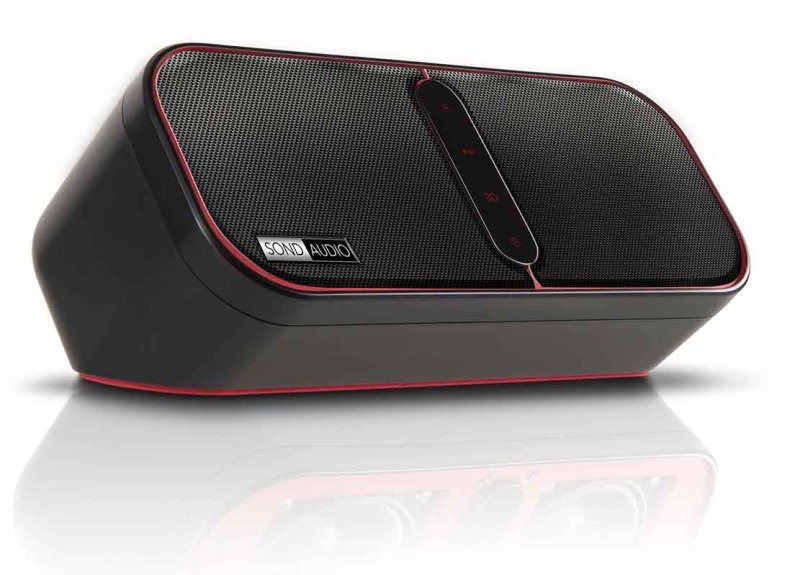
When choosing a portable Bluetooth speaker you’re probably swayed by several factors -- size and brand being chief among them. I own a Cambridge Audio Minx Go, and the Cambridge Audio name was definitely one of the reasons I considered that speaker in the first place.
Sond Audio probably isn’t a name you’re familiar with. It’s actually Ebuyer’s own audio brand, and products under that label include speakers, headphones and soundbars. The Sond Audio portable NFC speaker is the first Sond product I’ve tried, so is it a hit or miss?
The speaker is small compared to a lot of portable models -- 8.5cm x 19.5cm x 9.5cm (HWD) -- and quite stylishly designed. It’s black, with red trim and a red base, and sits angled at 30 degrees with the two speakers pointing upwards. There’s a base tube on the rear.
Controls consist of a power button on the top which can also be used for pairing, and a touch strip on the front to control volume, playback and the built-in 3D surround sound effect.
You can connect to the speaker in a choice of ways, as well as being Bluetooth 4.0 compatible, it has an NFC touch point on the top of the device. Tap a compatible phone or tablet and it will be paired quickly. In practice this feature works well, and I’ve had no problems with it at all. There’s also a 3mm input which will allow you to connect non-Bluetooth devices, and a microUSB port for charging (there’s a small charging light next to this). Fully charged the Lithium-ion polymer battery promises around 18 hours of operation, which is about right based on my experience. There’s no way of knowing how much battery life you have remaining, but charge it fully before you need to use it and this won’t be a problem.
As to the sound quality, it’s surprisingly good. Rich and the right side of meaty, and with 16W output it’s powerful enough to fill a room when cranked right up. The 3D surround sound option does a decent job of simulating stereo, although it's no replacement for multiple speakers. You can still tell the music is coming from the one part of the room, although it definitely does widen the audio. The button on the back changes from blue to green when the effect is on.
I've tried the speaker with an eclectic selection of music and it handles everything from opera to rap well. The bass is sometimes a little overpowering, but mostly it's well balanced and never tinny.
There’s a nice ruggedness to the speaker which I really like. It’s solid and can stand being chucked into bag and bashed around with no ill effect.
At £49.98, including free delivery, this is a decent Bluetooth speaker, and the inclusion of NFC is a welcome touch.
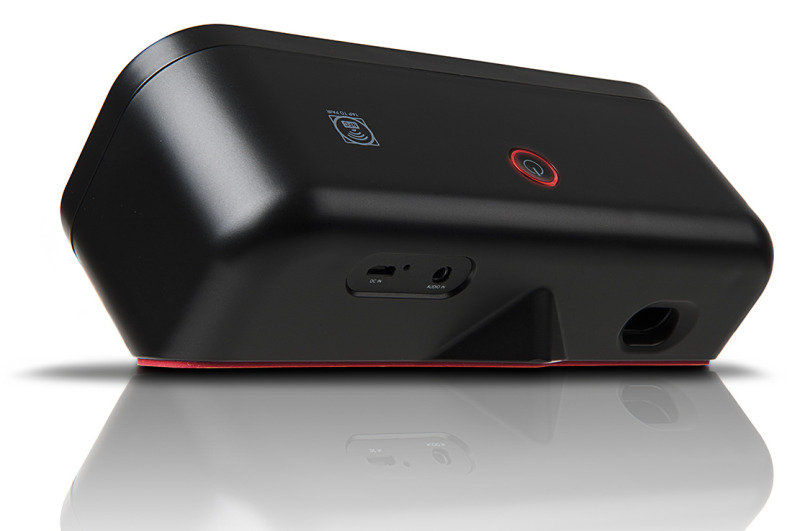
-

Build 10080 of Windows 10 for phones arrives -- Universal Office apps now available
Publié: mai 14, 2015, 7:59pm CEST par Wayne Williams

Microsoft doesn’t seem to know exactly what to call its version of Windows 10 for smartphones. It was called "Windows 10 Technical Preview for phones", and then yesterday, when unveiling the different editions of the new operating system, Microsoft called it "Windows 10 Mobile".
Today, however, it’s back to "Windows 10 Technical Preview for phones", although in the official blog post announcing the latest release -- Build 10080 -- it’s also called "Windows 10 Insider Preview for phone". I guess you just have to take your pick. Hopefully the tech giant will have decided on an official name when it releases the finished version later in the year.
Insiders on the Fast ring will be able to install Build 10080 today and if that includes you you’ll want to grab the new version asap because it offers lots of improvements. If you’ve yet to try the mobile OS out because it hasn’t previously been available for your particular choice of Windows Phone, then this might be the build for you. You can now install it on the Lumia 930/Lumia Icon, Lumia 640 and 640XL, and HTC One (M8) for Windows (Verizon customers whose HTC device is on version 8.10.15143.154 are excluded from the upgrade at this time, however).
So what’s new in this build?
Windows Store Beta for phones: There’s a first look at the new Windows Store in Windows 10 for phones (or Windows 10 Mobile, possibly) built using the new Universal Windows Platform code.
Universal Office apps: Word, Excel, PowerPoint and OneNote Preview apps are all available from the new Store.
Music Preview app: The new app lets you access your music collection and play all of your music -- including songs you have added to OneDrive.
Video Preview app: Browse and play video files (including MKV files) on your Windows phone.
Xbox app: The Xbox app for Windows 10 is also now available for phones in the new Store.
New Camera app: The new camera app will work well on some devices, and not so well on others. You can make it the default camera app by going to Settings > System > Photos & Camera (or pin it to your Start screen). If you have a high-end Lumia, Microsoft recommends you stick with the Lumia camera app for now as it offers more functionality.
Lots of bugs have been squashed too, although with this being a Fast ring build you can expect to encounter plenty of odd issues in day-to-day use. The blog post lists some of the known problems.
-

Raspberry Pi Model B+ gets a massive price cut -- now even more affordable
Publié: mai 14, 2015, 10:24am CEST par Wayne Williams
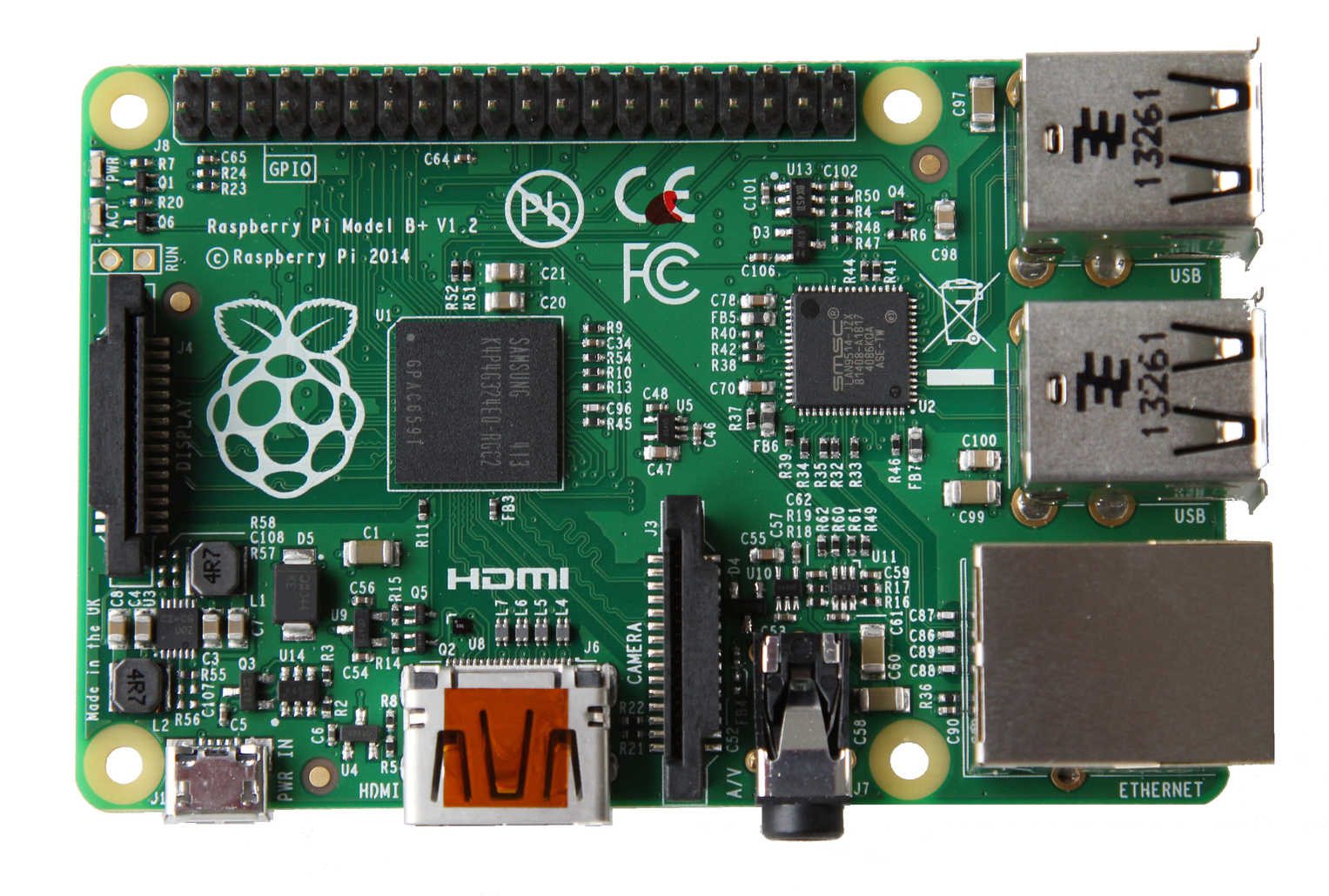
All models of the Raspberry Pi have always been very affordable -- that’s a big part of the appeal. When the B+ launched 10 months ago it was priced at $35 dollars -- which was the same as the regular B model, despite improvements which include additional USB 2.0 ports, lower power consumption, and better audio.
However, three months ago the Raspberry Pi 2 arrived, and that was also priced at $35. Suddenly, the B+ seemed like a bad deal in comparison. But not anymore.
Due to "production optimizations", the Raspberry Pi Foundation is now able to produce the Model B+ cheaper than it used to be able to, and it’s passing those savings onto buyers.
Going forward the Model B+ will set you back just $25, a $10 saving. The price change will take a day or two to be implemented, but you’ll be able to buy the cheaper device from RS Components in the UK or MCM Electronics in the US.
See also: Get Windows 10 for Raspberry Pi 2 now
The top-of-the-range Raspberry Pi 2 is the model most buyers will want to go for, but if you don’t require the extra memory or improved performance it offers, then for just $25 you really can’t go wrong with the B+.
-

Zombies, Run! gets a massive update, goes free-to-play
Publié: mai 14, 2015, 9:38am CEST par Wayne Williams
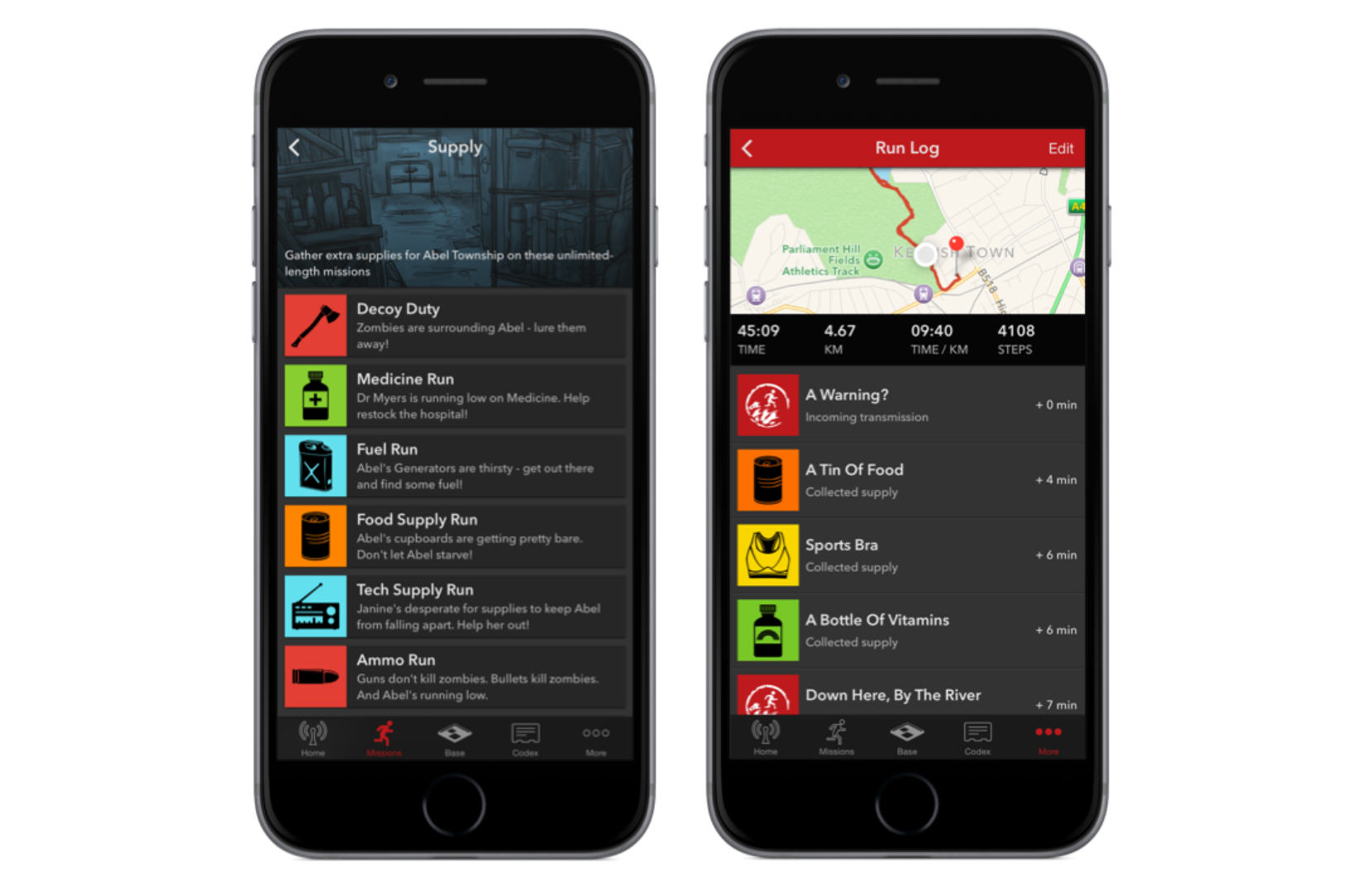
I’m a huge fan of Zombies, Run! and whenever I hit the treadmill (or, less frequently, the streets) the exercise app is always with me, turning a boring run into an action-packed journey through the zombie apocalypse.
I’ve been eagerly awaiting Season 4 of Zombies, Run! for ages now, and today is the day it arrives, bringing with it not only 40 new missions, but also some big improvements, including an important pricing change -- it’s now free to play.
"Over 1 million people use Zombies, Run! to get fit and lose weight. With Zombies, Run! now free to play, we’re looking forward to welcoming millions more players into our family. The more people who are prepared, fit, and healthy for the coming zombie apocalypse, the better!" says Adrian Hon, CEO of Six to Start.
"We’ve always been committed to making fitness as accessible as possible; you can play Zombies, Run! no matter what shape or size you are, and the game works with you, whatever fitness level you’re at. By going free-to-play, we’ll make our kind of non-judgmental, exciting and fun exercise available to so many more people. I’m really proud of what we’ve made in Zombies, Run! and I can’t wait to hear from millions more players after we raise the gates and let them in," adds co-creator and lead writer Naomi Alderman.
New players have access to the first four story missions, with one additional mission arriving every week. Upgrading to a Pro Membership immediately unlocks all 200 story missions, in addition to Interval Training and Airdrop Mode, and costs $2.99/month, $19.99/year. Existing players get access to Seasons 1-3, along with all other paid add-ons, and will be able to play one Season 4 mission per week for free, or unlock all released Season 4 missions by upgrading to a special pro membership for $7.99/year.
Other changes to the app include improved Spotify, Pandora, and Google Play Music support, the ability to play multiple missions back-to-back, and adjustable zombie chase difficulty. There’s also an all-new interface.
Zombies, Run! is available for iOS and Android, with Apple Watch and Android Wear support planned for the near future. Find out more at [zombiesrungame.com]
-

Watch Microsoft Research's Devices and Networking Summit 2015 live here
Publié: mai 13, 2015, 11:37am CEST par Wayne Williams
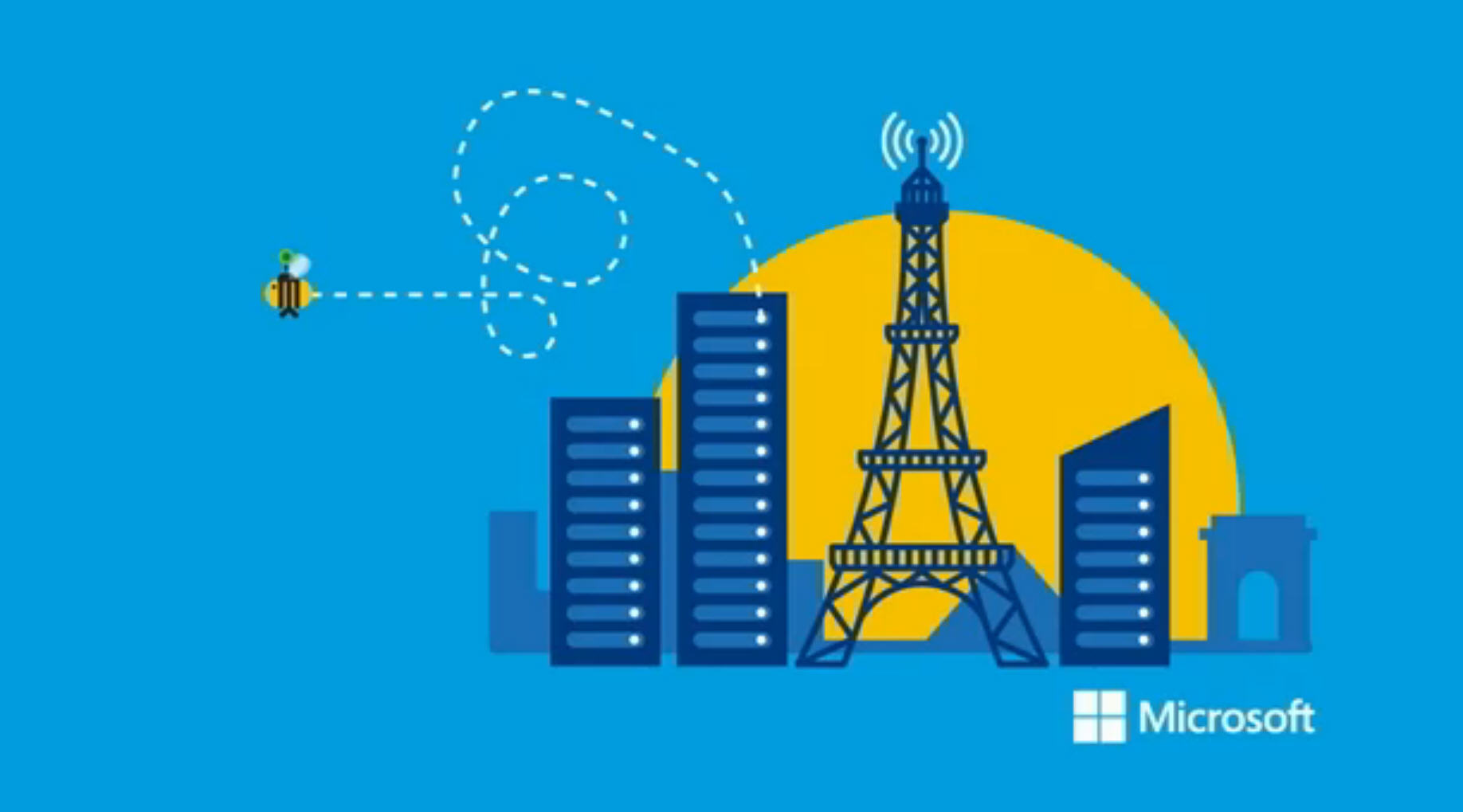
Microsoft Research Devices and Networking Summit 2015 brings together over 175 experts to discuss cutting-edge developments, potential breakthroughs, and ongoing technology concerns.
Microsoft believes the event deserves broad participation, so will be live streaming key speeches, interviews, and demos from the Summit, and you can watch Wednesday's webcast right here as it happens.
The stream will cover topics such as the design of the next generation of connected devices, what’s new in the world of wearable, connected health monitors, developments in next-gen Wi-Fi, and Mobility First, a proposed new architecture of the Internet.
There will also be information on the Surface Hub for Research RFP (request for proposal). Microsoft describes this as a "golden opportunity for qualified academic researchers to create innovative applications that exploit the capabilities of the Surface Hub’s huge, multi-sensing, pen-and-touch display". Sounds interesting.
The live stream begins at 12.30pm CEST/11.30am BST so be sure to tune in from then.
-

Google set to revamp Android app permission controls
Publié: mai 8, 2015, 2:51pm CEST par Wayne Williams
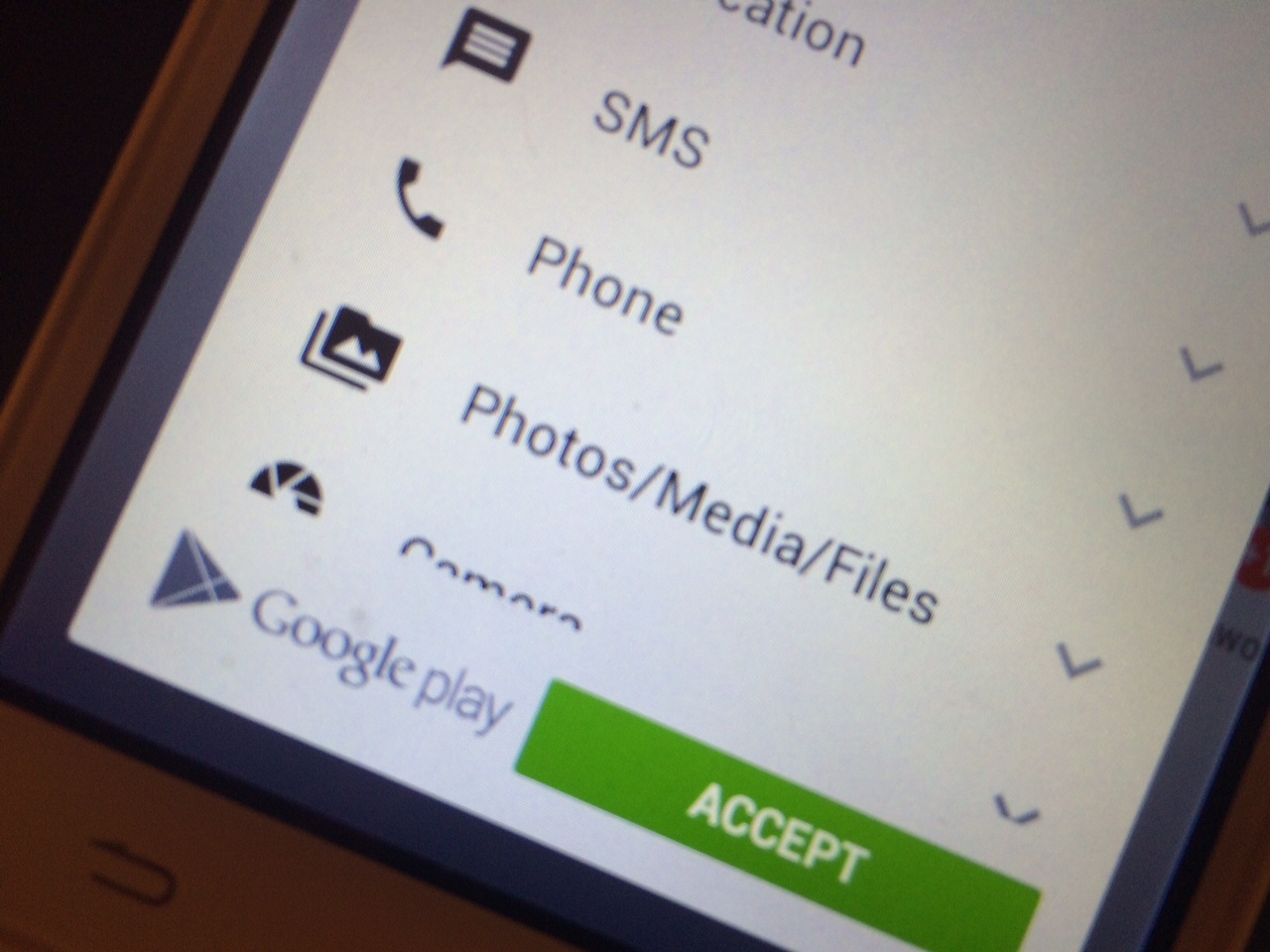
When you install an app on iOS it will ask for permissions as and when required. In Android things are done differently, and you’re informed about what permissions are required from the off. This can be rather disconcerting, as some of the permissions requested can seem both scary, and unnecessary.
Usually, there’s a good reason why an app needs the permissions it does, although it may not always be obvious, and it’s all or nothing. If you don’t agree with the list of permissions the only option is not to install the app. You can’t simply block or revoke individual permissions, at least not without rooting your device first. However, that may be about to change soon.
According to Bloomberg, Google is planning to give users more control over what information apps have access to, blocking anything too onerous while still being able to install the app. This would bring it much more in line with Apple’s approach which I personally prefer.
This change is expected to be announced at Google’s I/O developer conference in San Francisco at the end of the month.
It seems like a smart move to me. What’s your view on the change? Long overdue or do you think things are fine as they are?
-

Just one percent of retail payments is made with a smartphone, and iPhone users buy more and spend more
Publié: mai 7, 2015, 9:04pm CEST par Wayne Williams

Do you pay for goods in stores with your smartphone? If so, you’re in the minority. According to Javelin Strategy & Research’s new Mobile Proximity Payments Forecast 2015 report, while 9 percent of online transactions are currently made on a smartphone, mobile proximity payments -- that is using your smartphone to buy something in a brick and mortar store -- account for just 1 percent of all retail transactions.
Apple users lead the way when it comes to mobile proximity payments, with almost 16 percent having made at least one purchase in a month. That’s nearly double the rate of Android smartphone owners.
iOS users also spend more, having made a median $20 purchase compared to $15 for Android owners.
Paying for goods in store with your smartphone is set to increase in popularity in the coming years (and smart watches will provide another way to make such payments). Javelin Strategy & Research forecasts that by 2019 mobile proximity payments will total $54 billion.
"Power has shifted to the consumers with smartphones, and vendors must adapt and respond in new ways," say Daniel Van Dyke, Mobile Research Specialist at Javelin Strategy & Research. "The merchant’s own app can be used to offset competitors’ shopping apps, by using targeted rewards, discounts, and loyalty points".
Do you use your smartphone to pay for goods in store?
Image Credit: Hasloo Group Production Studio / Shutterstock
-

Watch Microsoft CEO Satya Nadella's Ignite keynote here live
Publié: mai 4, 2015, 3:36pm CEST par Wayne Williams
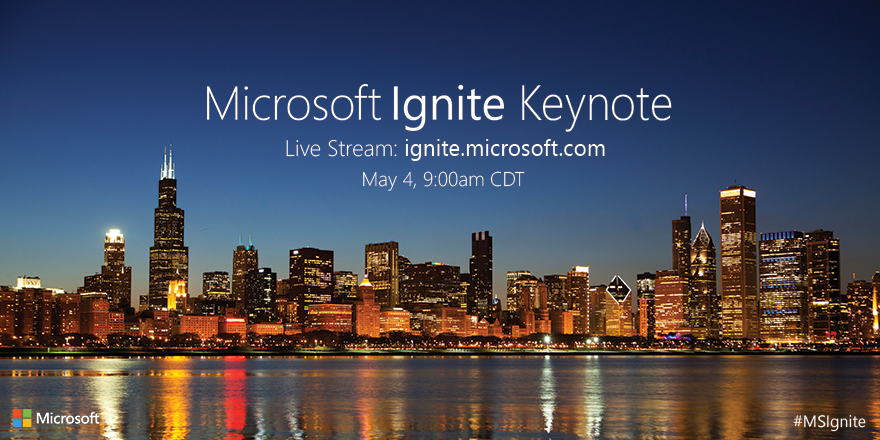
Build is over for another year, but that’s not the only Microsoft conference around. Ignite, the new enterprise focused tech event, starts today in Chicago.
Not familiar with Ignite? It’s essentially a number of Microsoft conferences rolled into one. As the tech giant describes it, Ignite is: "for big thinkers looking for an edge. It’s for anyone who attended the Microsoft Exchange, Lync, Project, SharePoint, MMS, or TechEd conferences -- and then some. It’s for senior decision makers seeking what’s next, and who want insights on key technology trends in the industry. It’s for IT professionals who need hands-on experience to enhance their tech skills. It’s for enterprise developers and architects looking for innovative ways to maximize application development. It’s for those who want to feel inspired and enlightened. It’s for you".
The event runs from today until May 8th, and Microsoft CEO Satya Nadella will open proceedings with a keynote at 7am PST/3pm BST. He will be outlining Microsoft’s company strategy and explaining how the tech giant is working hard to "empower every person and every organization on the planet to achieve more". Sounds interesting.
The event is fully sold out, so if you haven’t got a ticket, and you’re not in Chicago, your best bet is to watch the keynote here live.
-

It really is game over for Windows 8.x
Publié: mai 4, 2015, 9:50am CEST par Wayne Williams

Every month NetMarketShare releases usage share figures for all of the major operating systems. In the past these figures tended to paint an interesting picture of how well -- or rather how badly -- Microsoft’s newest operating system was doing. Occasionally the OS grew share, occasionally it lost share -- sometimes quite dramatically.
Now though, the only picture that’s being painted by these monthly figures is an operating system that has no future and will vanish quietly, and with zero fanfare, once Windows 10 arrives.
Windows 8 had a paltry 3.52 percent usage share in March, and dropped 0.02 percentage points to 3.50 percent in April. Windows 8.1 was on 10.55 percent in March, and grew to 11.16 percent a month later. In total the combined Windows 8.x managed to grow just 0.50 percentage points to sit on 14.66 percent. The tiled OS remains behind XP which, against all odds, still has 15.93 percent share.
As ever, Windows 7 remains the clear champion, with 58.39 percent usage share, rising 0.35 percentage points from March to April.
The clear takeaway from another unexciting month is no one is swapping operating systems at the moment, and that makes sense with Windows 10 set to arrive in a matter of months (on PCs at least).
Photo credit: Luis Louro/Shutterstock
-

Windows 10 will launch this summer -- but for PCs only
Publié: mai 1, 2015, 12:27pm CEST par Wayne Williams

When Microsoft announced it was planning a summer release for Windows 10, there were some raised eyebrows. When AMD suggested the new OS would launch in July, there were a lot more raised eyebrows. Windows 10 is coming on nicely, but there’s still a lot of work to do to get everything done and dusted in time.
It turns out Microsoft agrees. While Windows 10 will be released in the summer (not "July", just "summer"), it will only be available for desktop PCs, at first.
Speaking to the media, Joe Belfiore, corporate vice president of operating systems at Microsoft, said that bringing Windows 10 to PCs is the company’s number one priority, and that Windows 10 on other devices -- phones and Xbox One, for example -- would come later, likely in the fall.
Not only won’t the new OS be available for all platforms in the summer, but when it does arrive some of the new features announced at Build, such as support for Win32 desktop apps, won’t be included, and will arrive at a later date.
Photo Credit: ostill /Shutterstock
-

Ever wondered how old you look? New tool from Microsoft will hurt your feelings
Publié: avril 30, 2015, 8:45pm CEST par Wayne Williams
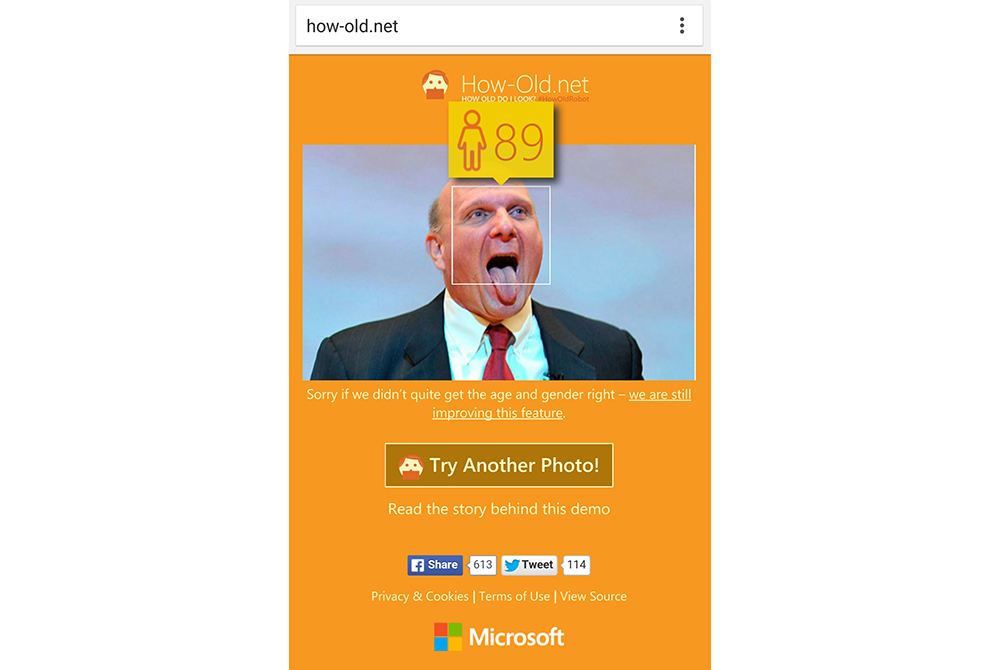
Microsoft has created a new website which makes use of its recently released Face detection APIs to guess a user’s age based purely on a photo they submit.
The creators expected around 50 people to be interested in trying out the project, but the site has gone viral, racking up over 35,000 users as of yesterday, and likely hundreds of thousands more today. People want to know how they are perceived by others and a site that promises to predict their age based on an uploaded photo was bound to be a hit. It’s a shame then, that a random number generator could probably produce more accurate results.
I’ve tested several photos of myself, and others, on the site and the ages predicted vary wildly. And I mean wildly. The site guessed I was 35, based on one photo I uploaded, and then 75 based on another. I’m actually 48. Both pictures were taken at the same time, just from a slightly different angle. My advice is if you try it, and you get a flattering result, stop there. The next result will likely not be as kind.
In fairness, it's early days, and Microsoft is still improving the feature, so it will hopefully get better in time. Well it has to really.
A post on the Machine Learning Blog explains how the technology works (or doesn’t) and makes for interesting reading.
You can try it out for yourself now at http://how-old.net. Let me know in the comments how accurate, or otherwise, it is for you.
-

You can now tweet playable MS-DOS games
Publié: avril 30, 2015, 1:37pm CEST par Wayne Williams

Using Twitter used to just involve writing something under 140 characters in length, but over time the service has evolved, and you can now include photos, animated Gifs, short videos, files and more with your tweets. And if that’s not enough, how about embedding fully playable DOS games?
The Internet Archive lets visitors play classic console and arcade games directly on its site, and it recently added 2,600 playable DOS games too. It’s those games that can be embedded on Twitter.
Adding games to your tweets is just a matter of finding the one you want on Internet Archive, and including the URL in your message.
Games in the archive include Cannon Fodder 2, Boulder Dash, Duke Nukem 3D, Wolfenstein 3D, Street Fighter II, Prince of Persia, Championship Manager, The Incredible Machine, Hexen, Sim City, and Wing Commander Academy.
The full list of games is here, and you can sort it by views (popularity), title, date, and creator.
The games all run in DOSBox, but sadly not all of them will function as they should, so you might want to experiment with a game, before tweeting it to your followers.
Playing Street Fighter II in a tweet is pretty cool! [t.co]
— Wayne Williams (@Waynewill1) April 30, 2015
-

Get Windows 10 for Raspberry Pi 2 now
Publié: avril 30, 2015, 9:36am CEST par Wayne Williams
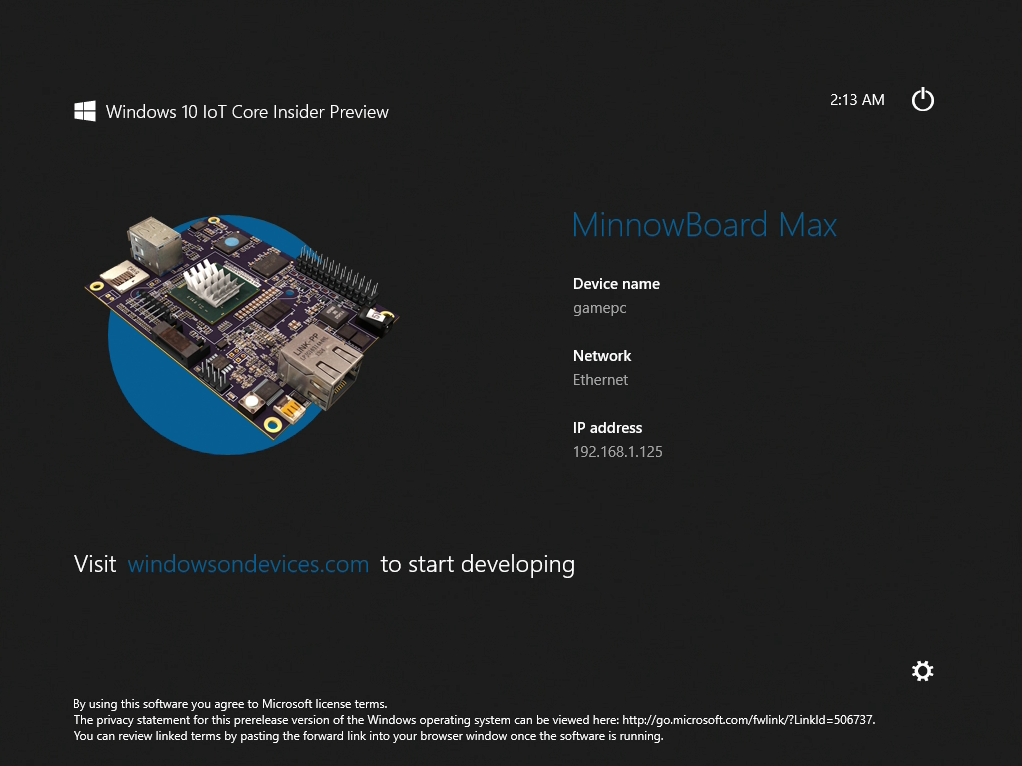
When the Raspberry Pi Foundation launched its new Raspberry Pi 2, we were impressed to hear it would be able to run Windows 10. Admittedly it isn't the full PC version of the operating system, but rather a special version created especially to run on such devices.
Yesterday, following the keynote at its Build developer conference, Microsoft released a new build of Windows 10 Insider Preview, but that’s not all. It also pushed out a Windows 10 IoT Core Insider Preview with support for Raspberry Pi 2 and Intel’s Minnowboard Max. So if you have either of those devices, you can download and try out the preview right now.
With it being a preview it’s a little limited and rough around the edges at the moment (the full version will be available when Windows 10 launches in the summer). Microsoft describes this release as a "conversation starter".
Steve Teixeira, Director of Program Management for the Internet of Things team in Microsoft's Operating Systems Group, says: "With this Insider Preview release of Windows 10 IoT Core, we’re bringing the power of Windows to Raspberry Pi 2 for the first time. We’re embracing the simple principle of helping Makers and device builders do more by bringing our world-class development tools, the power of the Universal Windows Platform, direct access to hardware capabilities, and the ability to remotely debug, update, and manage the software running on Raspberry Pi 2 devices".
You can find out more about the Windows 10 IoT Core preview here, and download it here (there are full instructions for getting started). You will need access to a PC running Windows 10 to set it up -- running Windows 10 on VirtualBox or another VM won’t work because you need access to the SD card reader. Also, you’ll need to connect your Microsoft account to the program and agree to the terms before you can download the preview.
The image above is what a Raspberry Pi 2 running Windows 10 will boot up to. You can also run the x86 version on your desktop.
-

Windows 10 will turn your smartphone into a tiny PC
Publié: avril 29, 2015, 9:09pm CEST par Wayne Williams
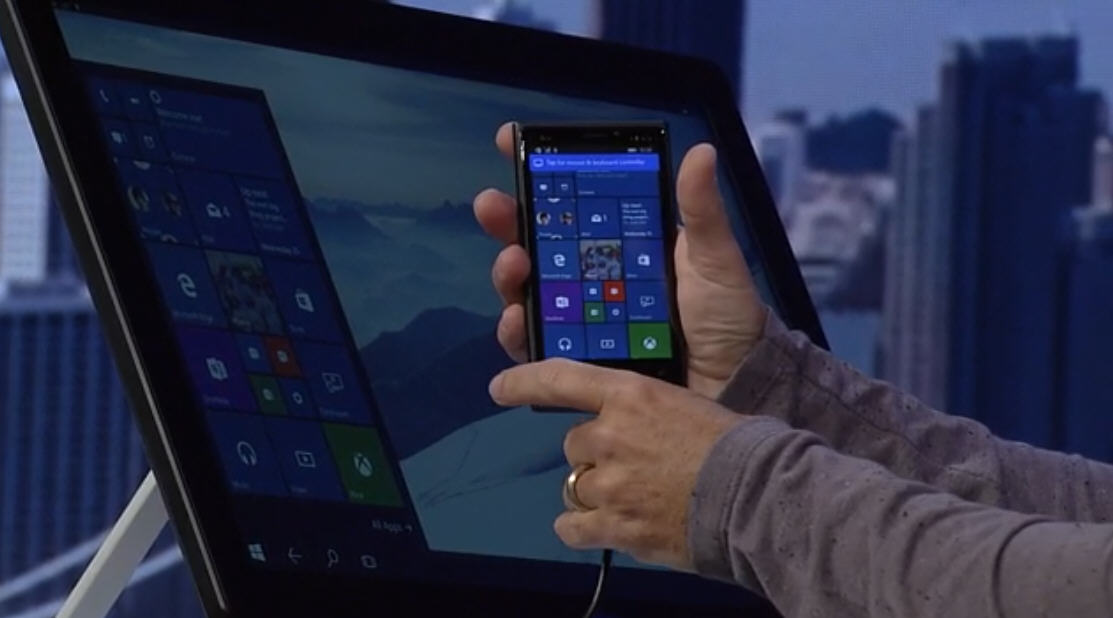
Smartphones are essentially pocket-sized computers, packed with processing power. However, Microsoft sees its devices as actually functioning as full-blown (if somewhat underpowered) PCs, once Windows 10 for phones arrives.
At the Build developer conference, the company showed how Continuum can transform a Windows Phone into a tiny Windows PC.
Continuum adjusts the Windows 10 UI based on what is plugged into it. So if, as in the example we saw, you connect a Windows phone to a monitor via HDMI and then connect a Bluetooth keyboard and mouse, the device will switch to desktop mode.
From there it will act as a proper PC. You can run software, interact with OS using the keyboard and mouse, and enjoy a full screen experience. You can of course access everything on your phone, such as any photos, and installed apps.
Disconnect the peripherals, and the phone will (with your confirmation) switch back to tablet mode.
This capability is something that will require new hardware to really get the most from it, but it certainly looks promising.
-

Microsoft aiming for 1 billion Windows 10 devices in 2-3 years
Publié: avril 29, 2015, 8:02pm CEST par Wayne Williams
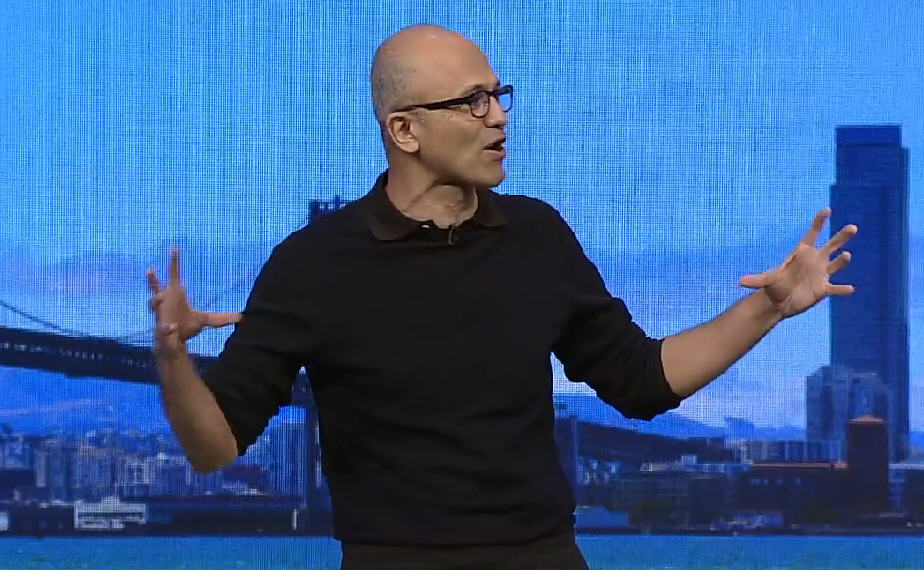
Windows 8.x is a massive failure for Microsoft, with a usage share that’s well below that of Windows XP.
With Windows 10, Microsoft is hoping to put the past behind it, and produce an operating system that isn’t overshadowed by older Windows versions.
During the Build developer conference keynote, Microsoft said that it expects over 1 billion Windows 10 devices to be in consumers hands within 2-3 years.
Talk about aiming high.
Of course Windows 10 will be available for a wide range of devices, and it will be free for Windows 7 and 8.1 users for the first year, so a billion devices running Windows 10 is not beyond the realms of possibility.
Whether Microsoft can achieve that figure remains to be seen of course, but there’s a good reason why the tech giant has chosen to announce its ambitions now, before the operating system is even finished. The company obviously wants developers to sit up and take notice of the new operating system’s reach. Who can ignore an OS running on a billion devices?

-

Watch Microsoft's Build 2015 keynote live here
Publié: avril 29, 2015, 2:05pm CEST par Wayne Williams

Microsoft's Build developer conference kicks off today, and as you’d expect the focus will primarily be on Windows 10, although we’ll likely see new Windows hardware announced as well. Will a new Surface Pro 4 make an appearance? Probably not, but you never know.
The show, which takes place at the Moscone Center in San Francisco, runs from today through to Friday, but it’s the opening keynote that promises to be the most interesting.
We’ll find out more about Microsoft’s work on Windows 10, and universal apps, we should get confirmation of when the new OS is set to arrive (will it be July, or later in the summer?), and hopefully we’ll see more of HoloLens, Microsoft’s augmented reality system. It's rumored (quite strongly) that Microsoft will be introducing support for Android apps in Windows 10, which will be interesting, to say the least.
The keynote starts at 08:30 PST/16:30 BST today, but don’t worry if you haven’t been invited to the event, because as always you can watch the live stream right here.
The video feed will go live later today, so be sure to check back closer to the starting time.
-

Windows 10 Build 10074 available to download -- This is what's new
Publié: avril 29, 2015, 11:52am CEST par Wayne Williams
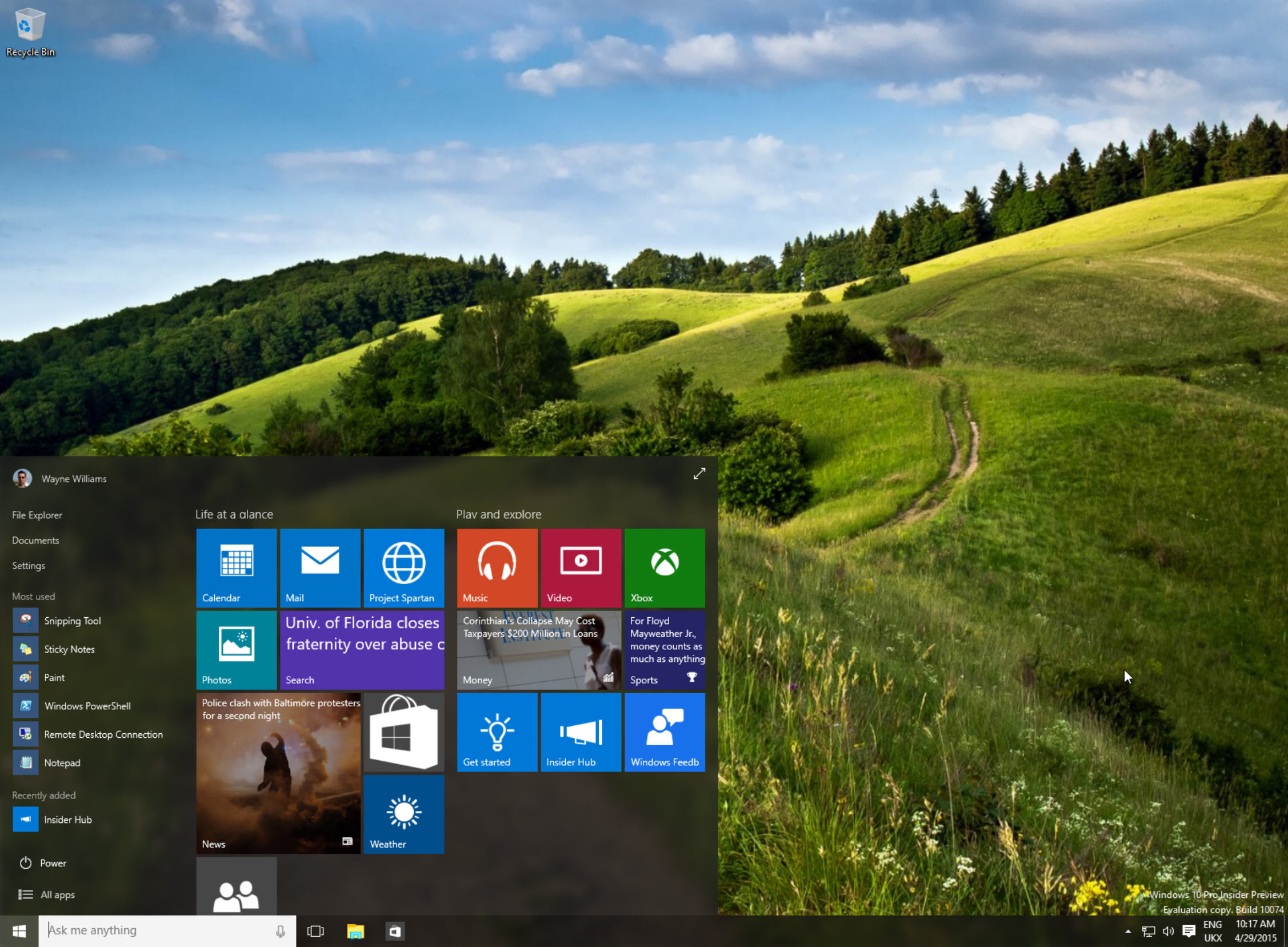
With Microsoft’s Build developer conference kicking off today, it’s no surprise that a new build of Windows 10 is set to be announced. However, a new version, Build 10074 is already available to download directly from Microsoft in ESD (Electronic Software Download) format.
To make use of this you’ll need an ESD decryption tool to convert it into an ISO file, or you can just grab the new build in ISO format from OSBetaArchive. There are Professional and Enterprise versions available in x86 and x64, for numerous different languages. So what’s new in this latest build? Quite a lot, starting with the operating system's name. No longer is it "Windows 10 Technical Preview", but now "Windows 10 Insider Preview".
The biggest change in the new build concerns Cortana. Microsoft's personal assistant now has a little sidebar from which you can access Notebook, Reminders, Places, Music (the Shazam-style feature), Help, and Settings.
If you launch Cortana from the Start menu, there's a smart little animation, and everything just looks a lot more polished.
When running Windows 10 in tablet mode, Cortana stretches up to the top of the screen.
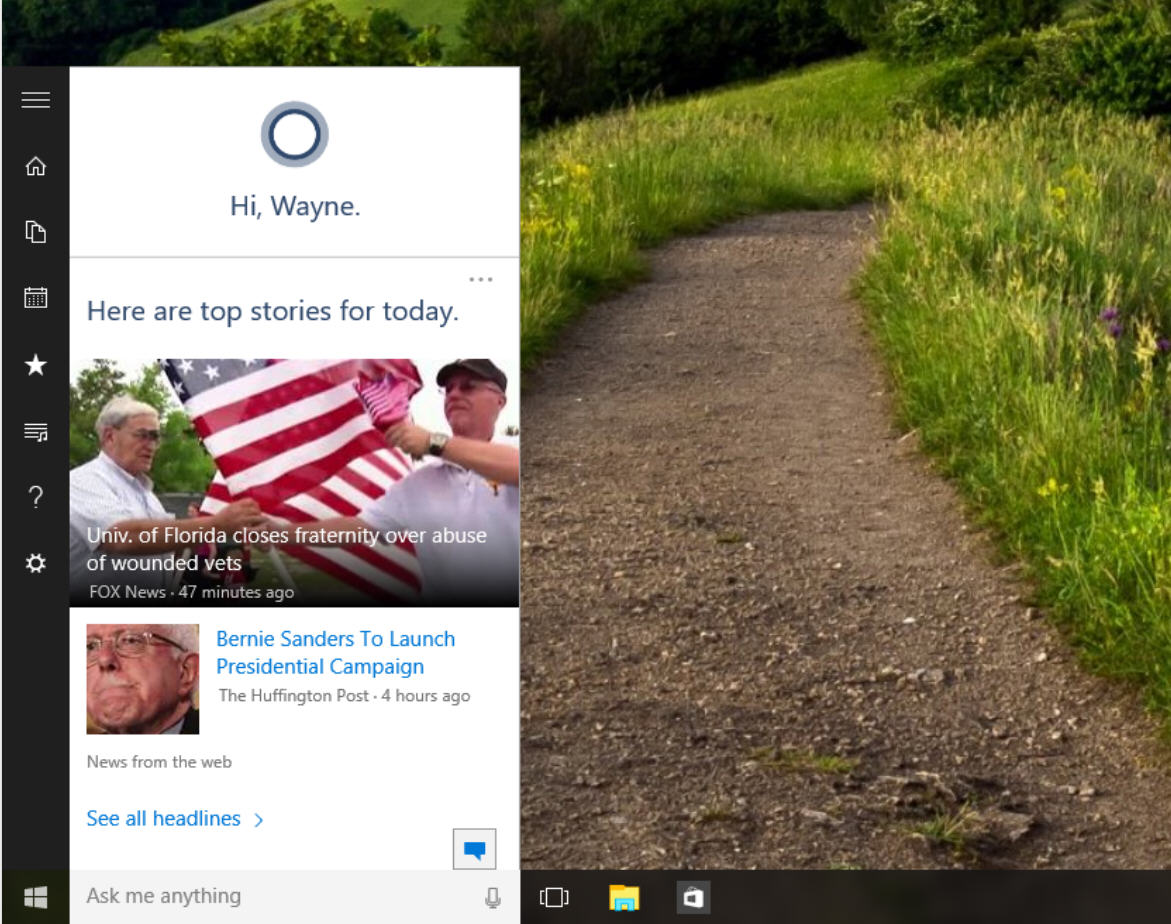
The look of the UI has been improved, with the Aero-like transparency effect for the Start menu and taskbar now enabled by default.
One of the coolest new additions to the Start menu is the 3D flip tile, which updates live tiles by rolling over. It's a small change, but one I really like. You can turn live tiles on or off via the right-click menu.
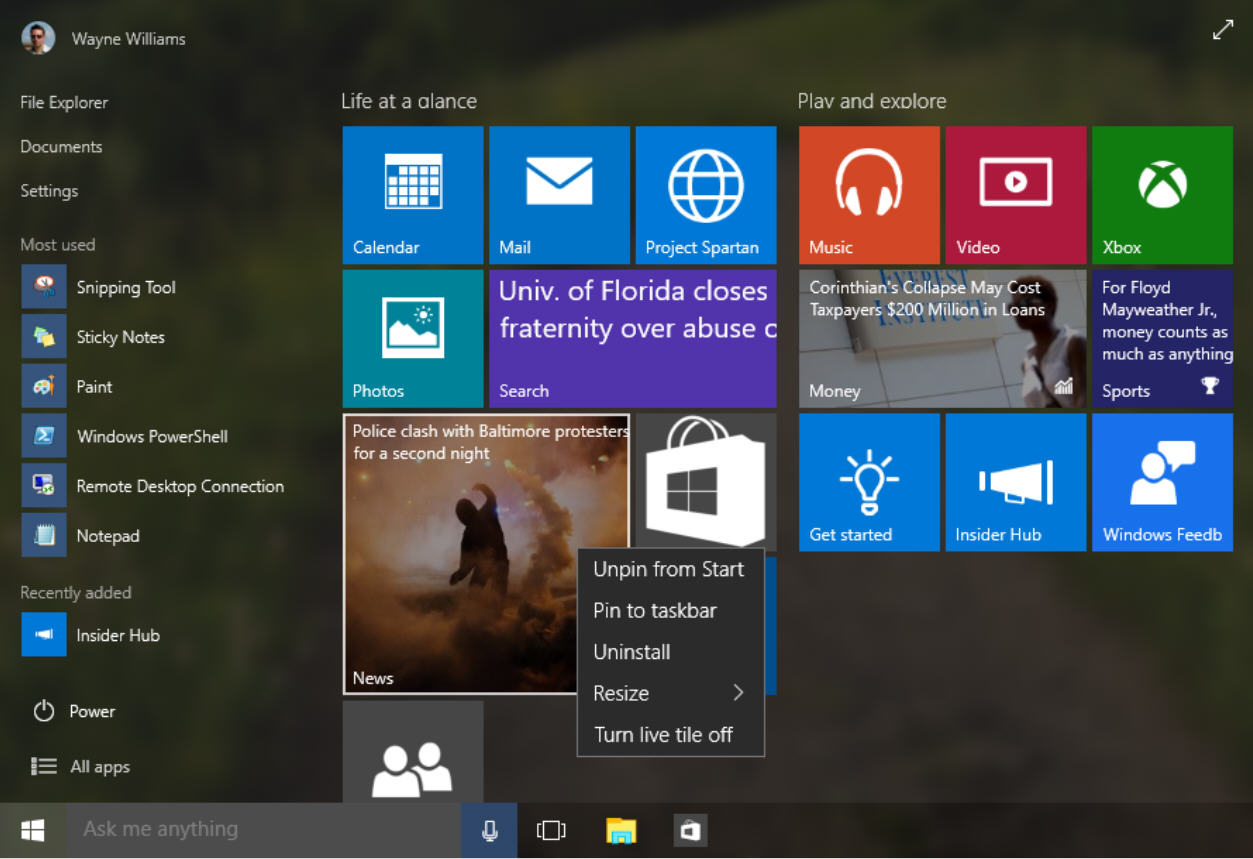
The build comes with collection of a new sounds, which you can access and manage by right-clicking the Sound icon. The volume slider is now horizontal, which has presumably been done to make it easier to swipe on a touch screen.

Windows Defender can now be configured under Update & Security, and the Settings menu has been updated to make it easier to navigate from one section to another.
This is set to be the build which Microsoft releases to Windows Insiders, so if you don't want to install and play around with a new copy of the operating system, you can just wait until it becomes available as a straight update in your existing Windows 10 installation.
-

38 percent of Apple Watch buyers have no idea when to expect their orders
Publié: avril 27, 2015, 2:13pm CEST par Wayne Williams
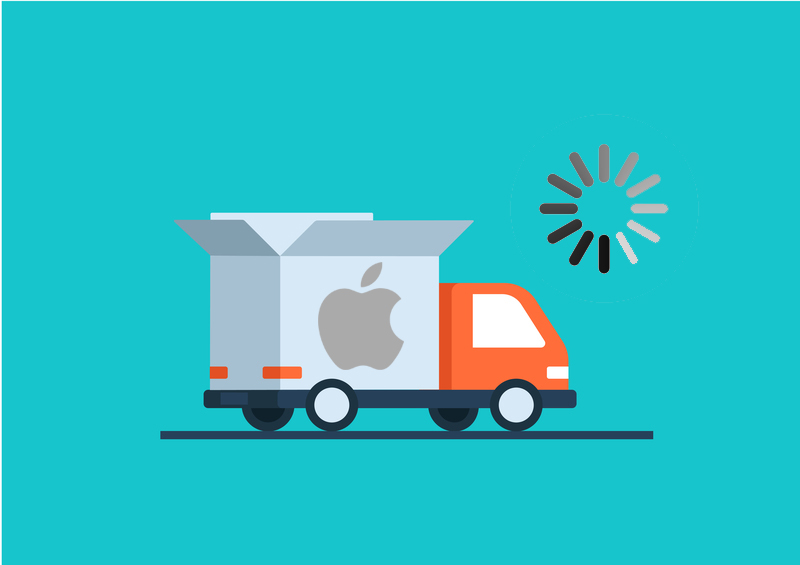
Apple Watch went on sale last Friday, with the first lucky buyers receiving their pre-ordered devices over the weekend. Apple’s latest product line hasn’t had the smoothest of launches, but at least some purchasers finally got to see what they had ordered online.
However, according to digital commerce analysts Slice Intelligence, only 22 percent (376,000) of the estimated 1.7 million pre-ordered Apple Watches have been delivered to US consumers so far. Other less fortunate (or just slower) buyers can expect a far lengthier wait.
Slice says a remaining 547,000 watches are expected to ship between today (April 27) and June 11, depending on how quickly Apple manages to fulfil the orders.
More damningly, 639,000 people will continue to wait for word of when the additional 647,000 Apple Watches will start arriving across the US. That’s 38 percent of orders still without a projected delivery date. Poor show Apple, poor show.
According to Slice Intelligence, which used its panel of over 2 million online shoppers to size up the early demand for Apple Watch, 62 percent of buyers opted for the cheaper Sport model, and 71 percent of shoppers went for the larger 42mm case.
Image Credit: Sentavio / Shutterstock
-

Android pisses all over Apple -- in Google Maps [Updated]
Publié: avril 24, 2015, 2:32pm CEST par Wayne Williams
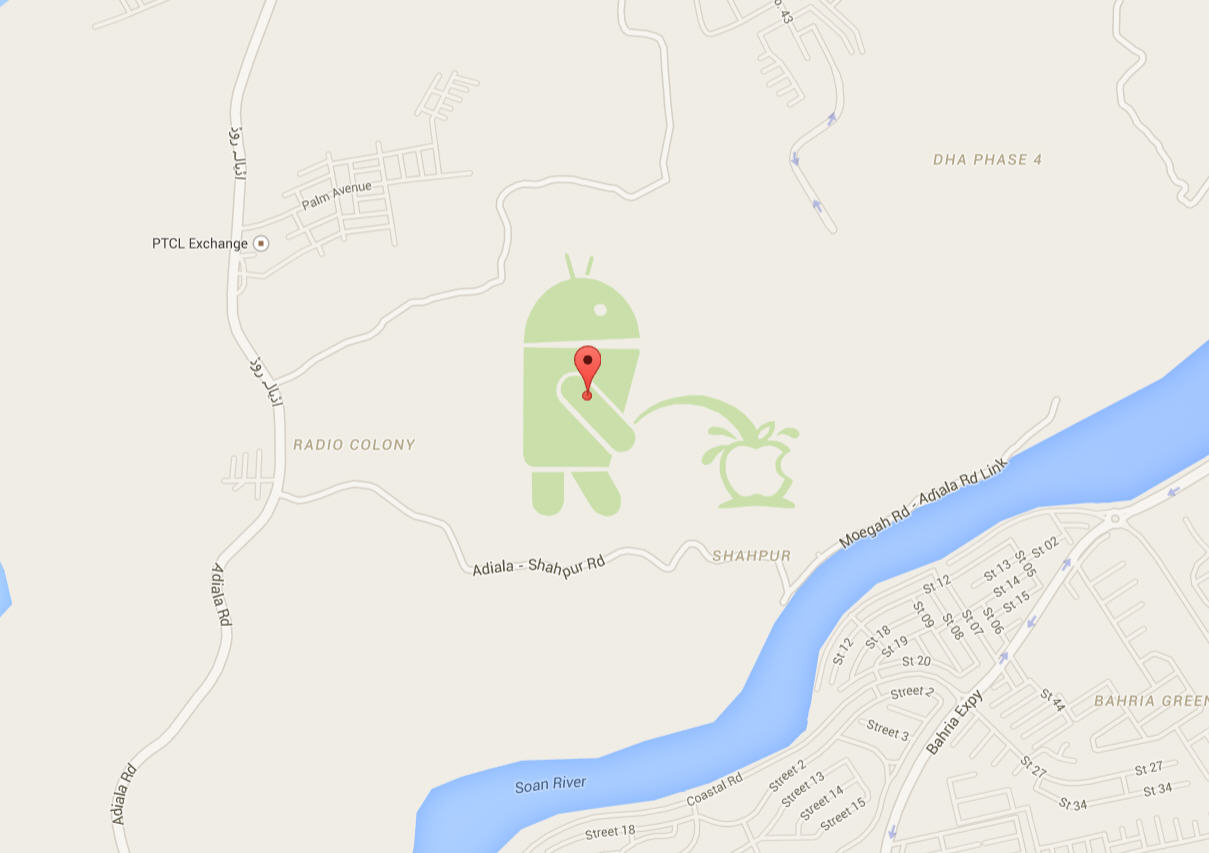
Google hides lots of Easter eggs in its products and services. Usually fun little extras designed to amuse. However, the latest one discovered in Google Maps is of questionable taste.
Tucked away in Pakistan, close to the New Islamabad International Airport, is a cartoon image of Google’s Android urinating on an Apple logo. Nice.
Quite how the imagery arrived there isn’t currently known. We’ve asked Google for a comment, and will update the story when we get it.
To see this little addition to the map, fire up Google Maps in the standard view and head to these coordinates.
Google will probably remove the imagery from the map shortly, so if it’s not there when you go to take a look, enjoy the screenshot above.
Is it a cutting social commentary on how well Android is doing compared to iOS, or just a piece of immature mischief? Either way it’s fun diversion for a Friday. Enjoy.
Update: Google says:
The vast majority of users who edit our maps provide great contributions, such as mapping places that have never been mapped before, or adding new business openings or address changes. We’re sorry for this inappropriate user-created content; we’re working to remove it quickly. We also learn from these issues, and we’re constantly improving how we detect, prevent and handle bad edits.
-

Celebrate YouTube's 10th anniversary by going back to where it all began -- the zoo
Publié: avril 23, 2015, 6:00pm CEST par Wayne Williams

Google’s video service celebrates a very special milestone today -- it’s ten years to the day since the first video was uploaded to the site. "Me at the Zoo", in all its 240p glory, has racked up close to 20 million views, which isn’t bad (especially as it wasn’t made public initially), although it pales into insignificance when compared with the likes of "Charlie Bit My Finger -- Again", with its 817 million views.
A lot has happened to YouTube in that time. It officially launched in May 2005 (so expect another birthday post next month) and was acquired by Google in 2006. It has spread across a wide range of platforms, batted off numerous legal challenges, and become a massive part of our lives.
Under Google’s stewardship, the video service has grown and grown, with YouTube trying new things and embracing new technology. Google recently launched a Kids’ version of the service, and is planning a paid ad-free version too.
Facebook is providing a challenge to YouTube’s crown however, and yesterday, just to sour any potential celebrations, announced that its users are now watching 4 billion videos a day. That’s a huge number, although YouTube reached the same figure back in 2012, so Zuckerberg’s company likely has some way to go to catch up. It’s believed YouTube is now serving around 8 billion videos daily.
That day at the zoo certainly proved to be a catalyst for something incredible. It’s a good thing the site's co-founder Jawed Karim took a camera with him.
-

How to customize Windows 10 Build 10061's new Start menu
Publié: avril 23, 2015, 3:53pm CEST par Wayne Williams
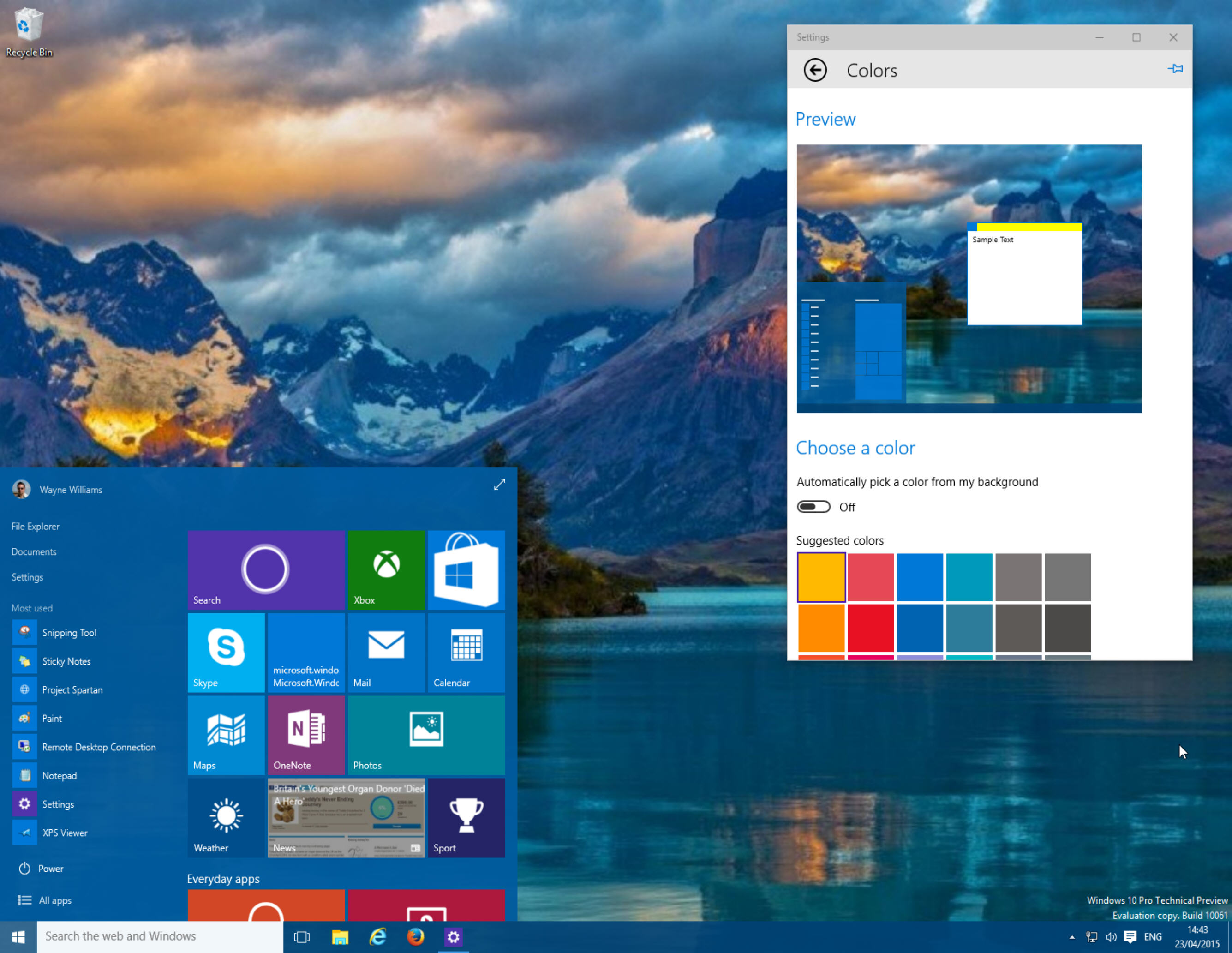
The new Start menu included in the latest build of Windows 10 -- available to Windows Insiders on the Fast ring -- is a marked improvement over previous versions. It’s resizable, and customizable. It’s also, like the build itself, rather buggy. It’s a bit like a fair-weather friend -- sometimes it’s there for me, other times it’s nowhere to be seen. Hopefully the issues with the menu will be sorted shortly.
If you’re running the new build, or planning to, then it’s worth customizing the Start menu to suit your tastes. There’s quite a lot you can do.
The obvious first step is to resize the Start menu. You can do this by clicking and dragging on the edge of the menu. You call pull it upwards, or sideways. The tile groups reposition themselves automatically. You can also expand the menu to full screen by clicking in the top right-hand corner. The tiles themselves can be resized via the right-click context menu. You can also reorder them by clicking and dragging.
Some changes can be made to the menu’s behavior by right-clicking the taskbar, and opening Properties. Click the Start Menu tab, and from here you can manage privacy options, choose the number of recent items to display in Jump Lists, and show suggestions in the Start menu.
In the new build, AutoColor is enabled. The Start menu will pull its color scheme from your Windows wallpaper. To change this -- to choose the colors for yourself -- click the Settings link, and then click Personalization. Click on Colors.
To disable AutoColor, turn off the "Automatically pick a color from my background" option. Windows will display a grid of colors you can use instead. Select one, and the thumbnail above will preview it. The color scheme will also be applied to Windows itself, so you can see the changes for real.
Scroll down, and you can choose whether or not to show this color on the taskbar and Start menu. If you turn this option off, you’ll get the standard dark theme.
The Colors screen also lets you enable or disable the Start menu transparency effect. Personally I like the effect, but a solid block of color works well on some desktops.
All of the changes are actioned immediately, no need to click on an "Apply" link or button to make them.
In the very first build of the Windows 10 Technical Preview, removing all of the tiles from the Start menu caused it to shrink down to a Windows 7-style tile-free design. What happens if you do the same thing in the new menu? You end up with a lot of blank space where tiles should go. This will hopefully be fixed in a future build.
-

Windows 10 Build 10061 -- buggy, but a huge leap in the right direction
Publié: avril 23, 2015, 11:06am CEST par Wayne Williams
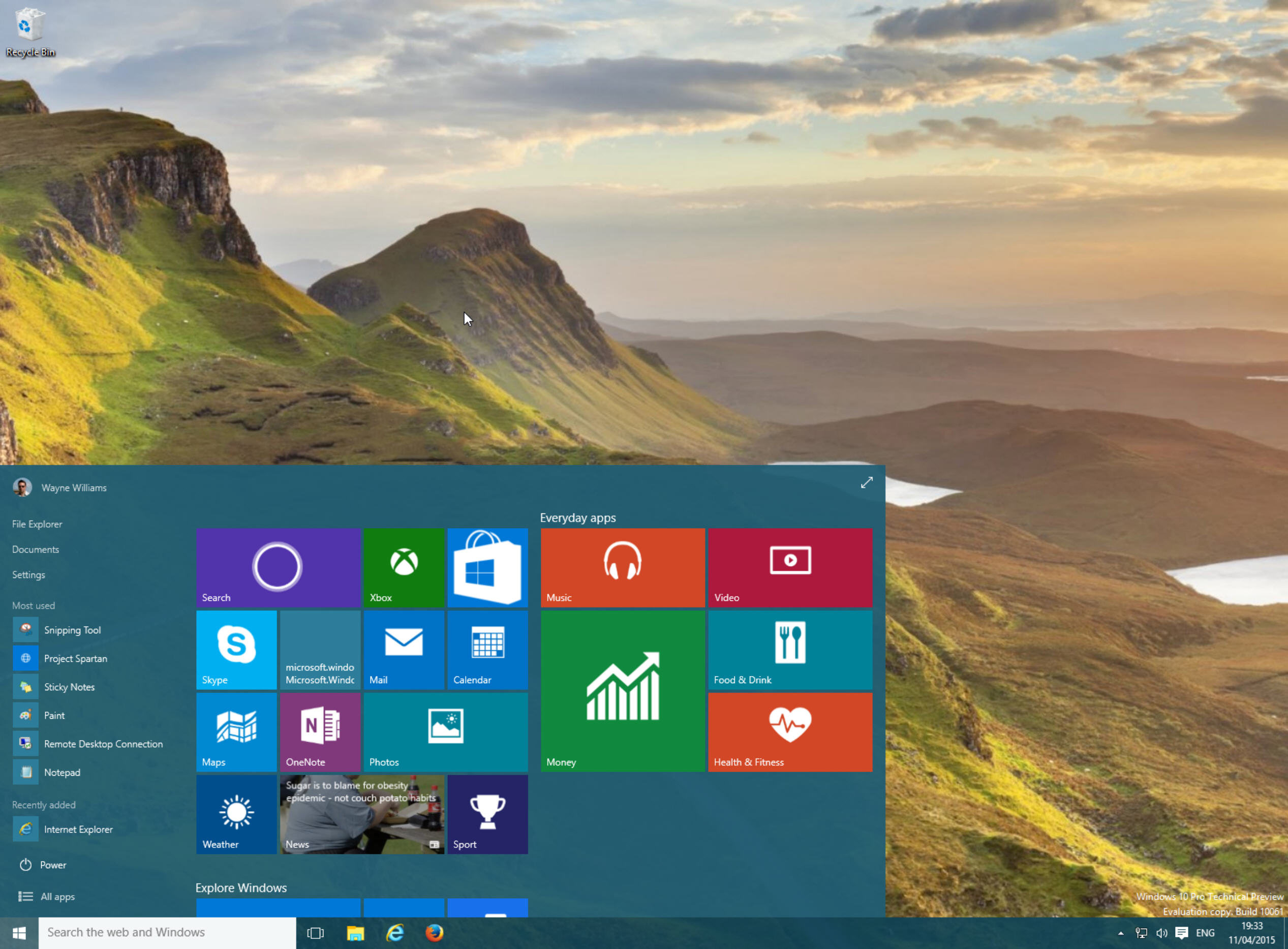
I’ve been playing around with the latest build of Windows 10 Technical Preview that was released yesterday, and I have to say I'm liking what I'm seeing so far.
I have been critical of previous Windows 10 releases, opining that the OS wasn’t going to be what I was hoping for, and calling the previous build, 10049, dull, boring and bland. Fortunately, with Build 10061 Microsoft addresses a lot of my concerns and you can now see the operating system’s true potential. Here’s what I like about the new build.
The Start menu
It is finally resizable once more. As well as being able to toggle between Start menu and Start screen modes, as you could in the last few releases, you can now properly resize the menu by clicking and dragging on an edge. Pull on the upper edge and the menu will stretch upwards. It doesn’t quite reach to the top, so you can can’t have it like a sidebar, but it works well.
Pull it out to the side and the tiled panels automatically arrange themselves to fit. The menu’s transparency effect makes it all look very classy. You can toggle transparency off if you're not a fan, and customize the menu’s color scheme to suit your tastes.
It’s a marked improvement all round, although I’ve experienced some weird bugs whereby the Start menu sometimes won’t appear when you click the Start button. Signing out and back in again seems to fix the issue.
Dark Theme
The light theme, which looked awful and boring in the last build, has been replaced by the dark theme which looks much, much classier. You’ll be able to switch between light and dark themes in the finished build but you can’t do so at the moment. Some of the apps included in this build (including Settings) still use the light theme, which looks odd, but Microsoft's "housekeeping" should fix that soon.
The Icons
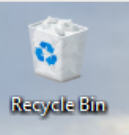 The childlike recycle bin has been replaced with a square, familiar, and much better icon. It’s the sort of icon you could happily leave on your desktop now and not try and cover up with small windows, unlike the previous bin. You honestly have to wonder if Microsoft made some of the changes in earlier builds just to upset users. Make the OS look so bad that when it fixes the problems everyone’s much happier. But the company couldn’t be that devious, right?
The childlike recycle bin has been replaced with a square, familiar, and much better icon. It’s the sort of icon you could happily leave on your desktop now and not try and cover up with small windows, unlike the previous bin. You honestly have to wonder if Microsoft made some of the changes in earlier builds just to upset users. Make the OS look so bad that when it fixes the problems everyone’s much happier. But the company couldn’t be that devious, right?New Apps
There are new Mail and Calendar apps in the latest build, both of which have a new UI that matches the new universal Office apps. The layout changes as you resize the apps, and they look great. There’s also a new People app which looks like it might be good, but as it only stays visible for a few seconds before crashing it’s hard to say for certain.
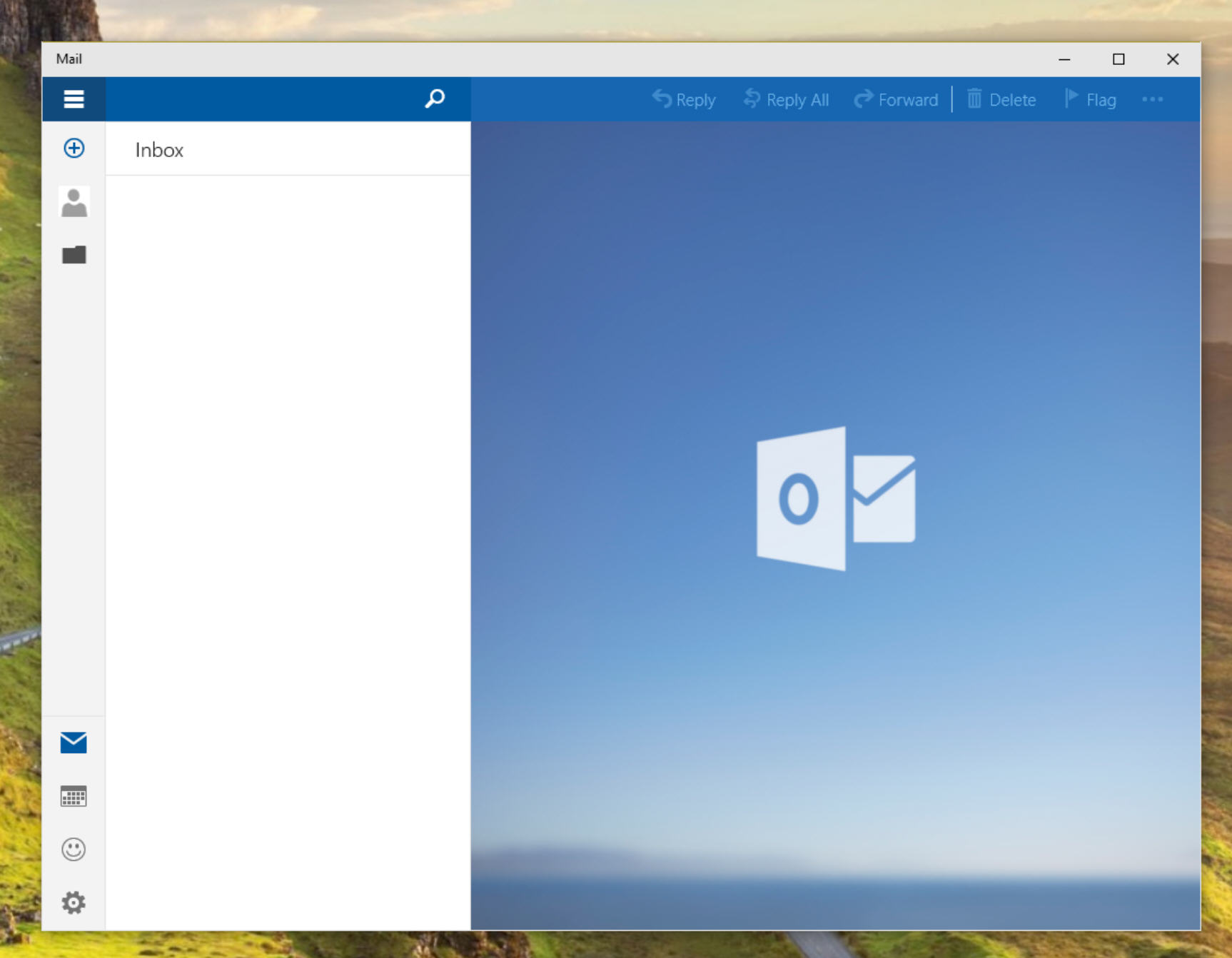
Task View
Virtual desktops is a feature I’m looking forward to in Windows 10, even though I have three screens attached to my main PC. It will be handy for keeping things organized, and it will be really useful on my laptop. The new build allows for unlimited workspaces, and also makes some cosmetic improvements. You can customize its behavior in Settings -- choose whether the taskbar should show windows that are open in all desktops, or just the one you’re currently in and using.
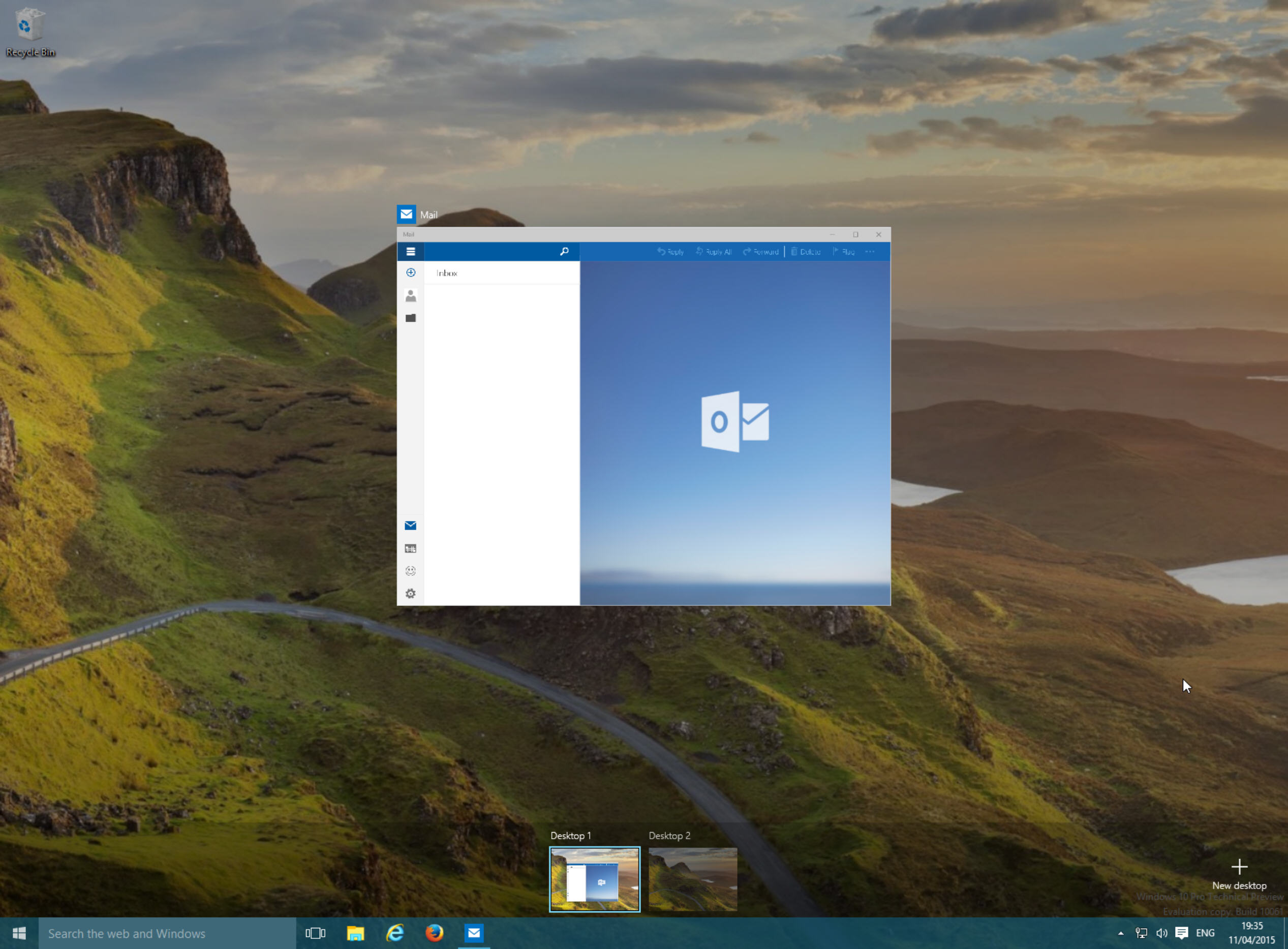
There are of course other changes in the new build, including improvements to Tablet mode, but those are the standouts for me. I’m really liking the new version, and it does give me hope for the finished release, although given the vast amount of quite nasty bugs in this build (expected in a Fast ring release), it seems incredibly unlikely Microsoft will have got everything tidied up and ready for that rumored July launch.
What’s your view on the new build?
-

Safari is king of the mobile browsers -- which could be bad news for Google
Publié: avril 22, 2015, 4:06pm CEST par Wayne Williams
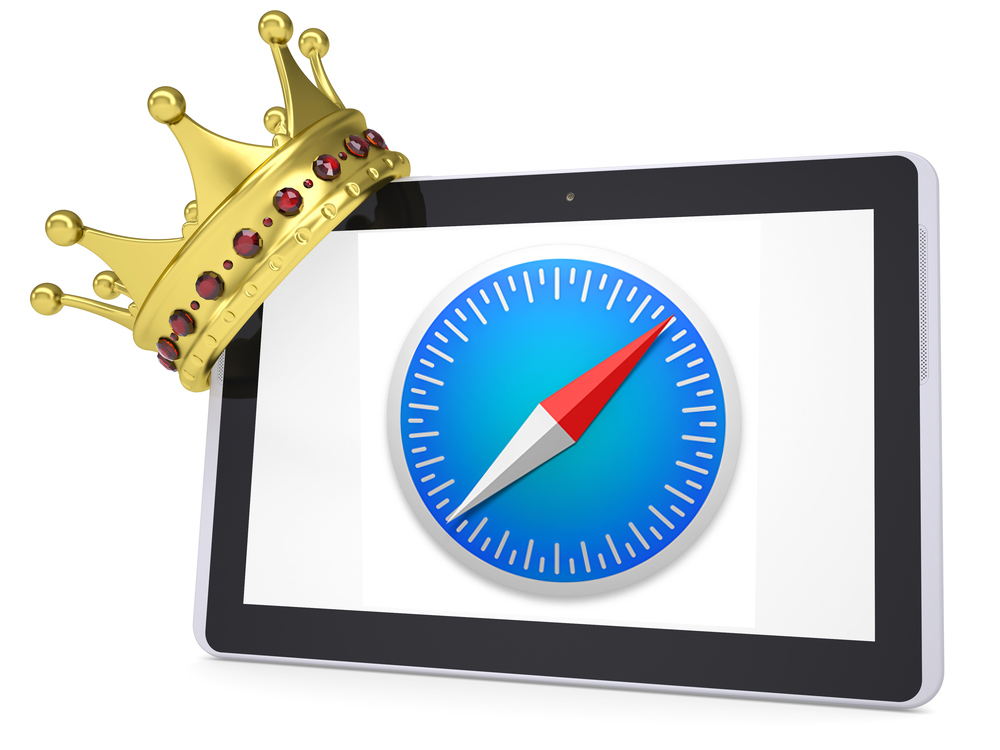
Google’s dominance of the web is best illustrated by Mobilegeddon. The search giant has made changes to its algorithm, prioritizing sites that are "mobile friendly" and demoting those that aren’t. Google says that mobile-friendliness is just one of 200 signals that it uses to determine the ranking of results and that sites which don’t have mobile versions won’t disappear as a result of this change. That said, the truth is if Google says you need a mobile site -- that it approves of -- then you need a mobile site.
But while Google is forcing sites to offer mobile friendly versions or suffer the consequences, it’s Apple’s browser that the majority of people are using to access the web while on the go.
According to independent website analytics provider StatCounter, Apple’s Safari browser accounted for over half of US mobile and tablet internet usage in March.
In that month Safari took 55 percent share, followed by Chrome on 29.9 percent and Android on 9.5 percent. Safari on the desktop is a far less potent force, with just 10.5 percent usage share.
Google is currently the default search engine in Apple’s browser, but if it wasn’t -- if Apple decided to end its default search deal with Google and get into bed with Bing, or more likely Yahoo -- that could have a major impact on Google’s mobile search share.
iPhone/iPad users are far less likely than Android users to change the default search engine in their browser (and far less likely to change their browser), so the impact on Google would be much greater than it experienced as a result of the recent Yahoo/Firefox arrangement that saw Google replaced as the default search engine in the US version of Mozilla’s browser.
Yahoo’s CEO Marissa Mayer has made it clear that she views search as an important area for the company, and although Yahoo renewed its longstanding search deal with Microsoft last week, the new terms allow either company to walk away from October 1 onwards. While there's no indication that either firm intends to initiate a break up, it's interesting how easy it would now be for that to happen.
If Apple decides to look for a new search partner in Safari, then Yahoo would be the perfect fit. Apple could, of course, consider creating its own search engine but getting into bed with Yahoo would make more sense -- especially given how badly its attempt at replacing Google Maps with its own mapping service went three years ago. Apple has lots of cash, while Yahoo, which sees mobile as its future, just reported worse-than-expected profits for the first three months of this year. The stars are aligning...
This is all speculation, of course, and wild speculation at that. There’s no question Google values mobile, and it wouldn’t let its search deal with Apple end anywhere near as easily as its one with Firefox did. Would it?
Image Credit: cherezoff/ Shutterstock
-

Could Windows 10 really be set to arrive in July?
Publié: avril 20, 2015, 2:55pm CEST par Wayne Williams

There were a few raised eyebrows when Microsoft announced it was planning a summer release for Windows 10, its next operating system. Most people assumed the tech giant was anticipating a late summer release -- September possibly -- but now it seems we might be seeing the new OS much earlier than anyone could have predicted.
According to AMD, and as reported by The Verge, Windows 10 will launch in late July. Which seems like an incredibly optimistic target.
During AMD’s earnings call last week, CEO Lisa Su said "with the Windows 10 launch at the end of July, we are watching sort of the impact of that on the back-to-school season, and expect that it might have a bit of a delay to the normal back-to-school season inventory build-up". It could be she was speculating, like the rest of, as to what Microsoft meant when it said the OS would be released in "summer", but her statement is rather definite -- "with the Windows 10 launch at the end of July". No "likely" or "expected" there.
So is Microsoft really hoping to get the OS done and dusted in three months? If the core functionality is in place and mostly bug free, and it’s just the graphics side of things the company has yet to finish, I could see that happening, but the latest Technical Preview builds are still very much a work in progress. The Start menu doesn’t currently resize, there are various graphical issues throughout (it’s ugly as hell), and it’s buggy. As my colleague Mark Wilson says, a "smooth user experience it ain’t".
The Windows Insider "Fast" ring is anything but fast, with official releases appearing at a glacial pace, despite Microsoft promising a month ago that new builds were going to be made available more frequently. The difference between the various builds (both official and leaked) hardly suggests that Microsoft is working at a blistering pace to get the OS finished. The last build issued to the Fast ring was three weeks ago.
At this rate we’re looking at maybe four more builds before RTM, unless Microsoft suddenly starts rattling out new builds with a ton of changes, which could happen, I guess. Although the company is hardly known for its speed.
If, by some miracle, Windows 10 does arrive in July I think it’s safe to assume a wealth of patches will follow afterwards, and early adopters can expect a rather rough ride to begin with.
Photo Credit: Lighthunter/Shutterstock
-

Tweet the Star Wars emojis, Luke
Publié: avril 16, 2015, 7:30pm CEST par Wayne Williams
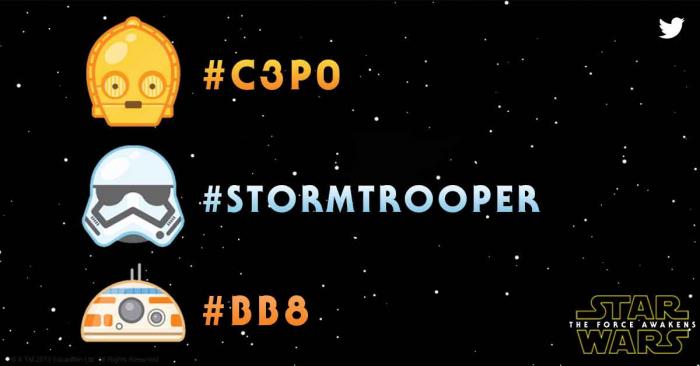
Yeah, it doesn’t have quite the same ring as "Use the Force", but it gets the point of the story across which is that, starting today, Twitter is rolling out new Star Wars inspired emojis.
Naturally this is in anticipation of the theatrical release of the new Star Wars movie, 'The Force Awakens' (which hopefully won’t be anywhere near as dreadful as the Star Wars prequels). Watch the new teaser trailer for that below.
The custom emojis have been created in partnership with Disney and Lucasfilm and include iconic legacy characters, as well as a handful of newcomers from the forthcoming film.
To use the #StarWarsEmoji all you need to do is add a hashtag relating to a specific Star Wars character/object to your tweet. #Stormtrooper for example.
Try it out, and see what you can come up with. By which I mean, do it, there is no try, after all.
-

The Apple Watch launch is a brand-damaging botch job
Publié: avril 16, 2015, 5:42pm CEST par Wayne Williams

It really is amateur hour at Apple. The tech giant’s first major product line launch in years has gone badly wrong, with the original in-store sales date scrapped, and no word of when the Apple Watch will actually go on sale for people to, you know, buy.
Sales predictions, and online pre-order numbers look great, but that’s about the only thing that’s good about the launch of the first new product line to come from Apple under Tim Cook’s stewardship. Frankly, everything else associated with the launch has been a balls up from start to finish.
Here’s a product that the Cupertino-based company has described as its most personal yet. It’s so personal, that the only way you can buy it is online. The least personal shopping experience there is.
You can choose the Watch version you want from some beautifully created 3D renders -- that aren’t actual photos -- and guess which size you might like. You can choose the strap color, based on what it looks like on your screen (let’s hope your monitor/tablet/phone displays the colors correctly) and then pre-order it. If you don’t want it any time soon. Estimates for shipping are around June.
If you actually want to see the watch, so you can get an idea of what it might look like for real, you can go to an Apple Store, and stare at it. Or play around with it. And even try one on… if you’ve made an appointment at a store which offers this. Not all do.
And if you like it, you can pre-order it. Online. And only online.
And it may arrive in June. Or sooner. Or later.
In a leaked internal memo (which you can read in full here), Apple’s retail chief, Angela Ahrendts, has this to say:
Given the high interest and initial supply at launch, we will be able to get customers the model they want earlier and faster by taking orders online.
Earlier and faster? The shipping estimate for a product you can pre-order online now, and have been able to pre-order for a week, is -- as I may have mentioned previously -- currently June. Surely, the easiest and fastest way to get customers the model they want, or any model for that matter, is to put some in stores, and sell them. Like Apple does with the iPhone. And iPad. And all of its other products.
Here’s what happens when someone wants to buy a Rolex. They go to a store, look at the models on display -- if they haven’t already decided on one from looking online -- try it on, and buy it. They then walk out with it. Why should Apple Watch be any different?
The problem of course, is Apple doesn't have enough watches to send to the stores to sell. If you go into a store to buy one, and there's not one for you take away, you can't buy it. Online is different. There might be no watches to buy, but the site will let you buy one anyway.
"Are we going to launch every product this way from now on? No", says Ahrendts. No kidding. If other companies want to get a good idea of how NOT to launch a new product line, Apple Watch is the perfect example.
"You’re the best team on earth and you are doing an amazing job", Ahrendts adds. 'I mean, not doing an amazing job of selling Apple Watches because we’ve done a crap job by not giving you any to sell, but an amazing job doing whatever job you are doing', I presume she means.
The Apple Watch was first revealed to the world back in September 2014. That’s a very long time ago now, and for it not to be available to buy -- for real -- after all that time is crazy. If Apple was aware of supply issues before putting the product up for pre-order it should have delayed pre-orders until it had something it could actually sell.
If the delay was down to the watches being custom built it would be forgivable, but that’s not the case. Apple doesn’t have enough watches to meet demand -- for whatever reason -- but it’s continuing to sell them anyway. If you can't meet the demand, Apple, stop selling them until you can.
Apple is the largest company in the world with incredible brand loyalty and (mostly) excellent products. But somehow it’s managed to badly, and incompetently, botch the Apple Watch launch, and that will do the brand no favors at all.
Apple Watch may not fail as a product line, but its launch has failed, and failed incredibly badly.
-

Apple Watch is coming… but when? [Update: not any time soon]
Publié: avril 16, 2015, 1:42pm CEST par Wayne Williams

Apple’s first wearable went up for pre-order last week, with early estimates suggesting it managed to sell close to a million devices in the US in one day alone. Reuters estimates 6 percent of US adults intend to buy the device. Oddly though, Apple has so far not released any official pre-order figures, which is strange if the device is the success that it appears to be. Why isn’t Apple shouting about it from the rooftops? What is it waiting for?
Another more pertinent question is this: when will Apple start selling the device -- for real -- and in-store? 24th April you say? Well that’s what Apple originally said, but that no longer appears to be the case.
Anyone pre-ordering the Apple Watch online can now expect to wait months before they receive their purchase. Some Apple Watch models have shipping dates listed as 4-6 weeks, while the Apple Watch Sport and Apple Watch Edition have shipping dates shown simply as "June".
Meanwhile, on the Apple.com website, the on-sale date -- the fabled 24th April -- has vanished. In its place is a vague "The Watch is coming" message.
Over on the UK version of the site, the 24th of April is still shown as the on-sale date. So that suggests that Brits will be able to buy the device then (although the online shipping delays are exactly the same for UK purchasers as they are for US ones).
So what’s going on? The obvious suggestion is that demand has seriously outstripped supply. Apple always limits the availability of new products at launch, so it can create an inflated illusion of popularity. The more popular something appears to be, the more people will want it. The harder it is to get, the more desirable it becomes, and so on.
But in this instance, Apple appears to either have seriously underestimated how popular the Apple Watch was going to be, or it’s run into supply problems and is struggling to meet the planned release date.
Either way, if you were hoping to walk into an Apple Store next Friday and walk out with a brand new Apple Watch, you’ll need to rethink your plans.
Update: According to a leaked internal memo from Apple’s retail chief, Angela Ahrendts, Apple Watch won’t be available to purchase in-store for a good while to come. Here’s what she said:
Team,
On behalf of Tim and the rest of the executive team, I want to thank you very much for making last Friday’s debut of Apple Watch unforgettable. The Previews going on in our stores and support from our Contact Centers are unlike anything we have done before.
The feedback from customers is overwhelmingly positive. They are excited about Apple Watch, and your teams are creating fantastic experiences for them. Customers who pre-ordered will start receiving deliveries next Friday as planned, and I know you will do a great job helping them get set up.
Many of you have been getting questions asking if we will have the watch available in stores on April 24 for walk-in purchases. As we announced last week, due to high global interest combined with our initial supply, we are only taking orders online right now. I’ll have more updates as we get closer to in-store availability, but we expect this to continue through the month of May. It has not been an easy decision, and I want to share with you the thinking behind it.
It’s important to remember that Apple Watch is not just a new product but an entirely new category for us. There’s never been anything quite like it. To deliver the kind of service our customers have come to expect -- and that we expect from ourselves -- we designed a completely new approach. That’s why, for the first time, we are previewing a new product in our stores before it has started shipping.
Apple Watch is also our most personal product yet, with multiple case and band options because it’s an object of self-expression. Given the high interest and initial supply at launch, we will be able to get customers the model they want earlier and faster by taking orders online.
I know this is a different experience for our customers, and a change for you as well. Are we going to launch every product this way from now on? No. We all love those blockbuster Apple product launch days -- and there will be many more to come. They’re the moments where you, our teams, shine. And our customers love them as well!
Apple Watch is an exciting new product and we are at the start of a very exciting time at Apple. You’re the best team on earth and you are doing an amazing job.
For customers who want to buy a watch, please continue to help them place their order online. Also make sure they know that, wherever they buy, Apple will provide them with a great Personal Setup experience -- either online or in our stores. This includes syncing their Apple Watch with their iPhone and teaching them about all the incredible features of their new Apple Watch.
Thank you very much again, and I look forward to seeing you soon.
-

HBO says 'down Periscope' after Game of Thrones livestreamed on Twitter's app
Publié: avril 15, 2015, 6:17pm CEST par Wayne Williams

Game of Thrones enjoyed an impressive season 5 premiere on Sunday, with nearly 8 million viewers tuning into HBO to watch it. Unfortunately for the broadcaster, millions more pirated the show -- as is the case every year -- and the situation wasn’t helped by the online leak of the first four episodes that came in advance of the new season’s launch.
HBO is obviously furious about that leak, which it confirms originated from an as-yet unidentified reviewer, but it’s equally unhappy with Twitter, whose Periscope app was apparently employed by some users to livestream episodes of the show on Sunday.
HBO has sent take-down notices to Periscope, but feels Twitter shouldn’t have to be told about copyright infringement before acting to stop it.
"In general, we feel developers should have tools which proactively prevent mass copyright infringement from occurring on their apps and not be solely reliant upon notifications", HBO said in a statement.
Google has tools to automatically spot when someone tries to upload copyrighted content to YouTube and it’s clear HBO would like to see something similar being used on Periscope.
That said, when millions of people are torrenting high definition episodes of the show, Periscope users live streaming it are the last of HBO’s worries.
-

Withings' scales now tell you the weather and how active you are
Publié: avril 13, 2015, 2:15pm CEST par Wayne Williams
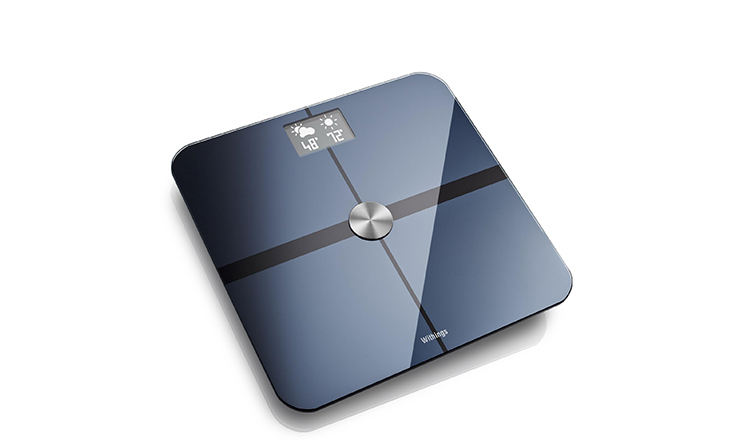
If you’re the sort of person who regularly weighs yourself, the chances are you do so first thing in the morning, before you’ve loaded your body up with food and drink. Scales can tell you your weight, and sometimes your BMI and now, thanks to Withings, they’ll be able to provide you with other information to kickstart your day.
A new firmware update for the company’s Wireless Scale and Smart Body Analyzer devices shows the current weather conditions and temperature, as well as your step count from the previous day.
The weather feature shows the current daily conditions (rain, snow, sun) and the average forecast temperature for both the morning and afternoon.
To track the number of steps taken since the previous day’s weigh-in users will need a Withings activity tracker (Pulse O2, Activité, Activité Pop) or the Health Mate app.
If you don’t own either the Wireless Scale or the Smart Body Analyzer you can buy them from Withings for $99.95/£89.95 and $149.95/£129.95 respectively.
The scales will (obviously) need to be connected to the internet to download the latest firmware.
-

Apple Watch first-day preorders nearly 1 million in the US alone
Publié: avril 13, 2015, 10:12am CEST par Wayne Williams
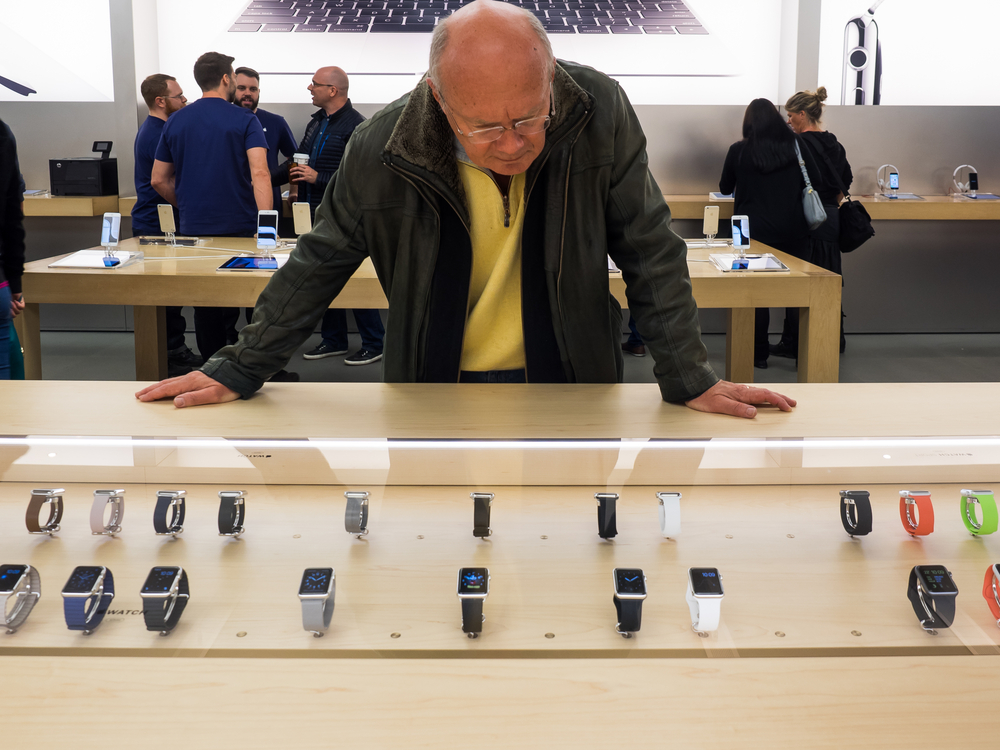
While Apple haters would love to see the company’s latest product fail, it looks as if the tech giant currently has another sizable hit on its hands with Apple Watch. High preorders have already triggered the predictable backlog -- supply was always going to fall short of demand, Apple knows how to play this game -- with shipping times now at least a month for all models.
Slice Intelligence tapped its panel of over 2 million online shoppers to size up the early demand for Apple Watch, and also for the new MacBook, and the sales estimates make for interesting reading.
According to the firm, 957,000 people in the US preordered an Apple Watch on Friday. As you might expect, the cheaper Sport model was by far the most popular choice, with 62 percent of buyers opting for that.
71 percent of shoppers went for the larger 42mm case, which is no surprise.
Slice Intelligence says that, based on ereceipt data from 9,080 online shoppers, preorderers spent an average of $503.83 per watch, and a lot of buyers ordered more than one device -- the average works out at 1.3 watches per shopper.
Naturally enough, most preorders came from the Apple faithful, with 72 percent of Apple Watch purchasers having also bought at least one other Apple product in the past two years.
While strong preorders are encouraging for Apple, it shouldn’t be viewed as a sign of the product’s success. It will be interesting to see what happens once the initial enthusiasm dies down. Will the Apple Watch maintain steady sales, or is this as good as it gets? Time will tell.
So what about the new MacBook? According to Slice Intelligence, 48,000 MacBooks were sold on Friday, with 512 GB model outselling the 256 GB version. Space Gray was the most popular color (58 percent), followed by gold (36 percent).
43 percent of new MacBook buyers also bought an Apple Watch, and 75 percent had purchased another Apple product in the past two years. 26 percent having bought an iPhone 6 or iPhone 6 Plus.
Did you preorder an Apple Watch or buy a new MacBook over the weekend?
Image Credit: Canadapanda / Shutterstock
-

The first four episodes of Game of Thrones Season 5 leak online
Publié: avril 12, 2015, 9:59am CEST par Wayne Williams

Season 5 of Game of Thrones begins tonight, and millions of fans will be tuned in in one way or another… but there’s a problem, and it’s a huge one.
Game of Thrones is the most pirated show in the world, and HBO has tried to counter that in the past year by making its programming accessible through additional means, which is a smart move. The only way to beat pirates is to offer an easier, and superior viewing experience. But how can HBO compete with leakers who are putting out episodes well in advance?
While HBO won’t be showing episode one until tonight, you can already download the first four episodes illegally via the internet. In a show that thrives on shocks and unexpected deaths, the fact that early episodes are already out there means there’s the potential for huge spoilers appearing to ruin the show for those who prefer to watch it legally on HBO.
Early episodes can, after all, have as many shocks as later ones. The Purple Wedding came in episode two of season four.
The four leaked episodes are believed to have originated from a screener sent to reviewers ahead of the show's launch. They are in 480p quality and there’s a blurred digital watermark visible in the bottom left hand corner. It’s a small disfigurement, and while the quality of the leaked episodes isn’t fantastic, they’re perfectly watchable.
HBO will be showing those four episodes in much higher quality so you'll probably want to wait and watch those, but you might need to stay off the web for the next month or so...
-

The best and cheapest ways to watch Game of Thrones
Publié: avril 10, 2015, 3:03pm CEST par Wayne Williams

Sunday is a massive day for Game of Thrones fans as that’s when the long awaited season 5 begins. During the Apple Watch 'Spring Forward' event, Tim Cook announced HBO NOW, a new and exclusive premium streaming service for Apple TV. The service, naturally, was perfectly timed to ride the latest wave of GoT hype.
But HBO NOW on Apple TV (or iOS) is hardly the only way to catch up on the world’s most pirated TV show. There’s, well, piracy for starters, and for more law abiding TV watchers, other options like Sling TV. If you're not already sorted for watching the show this weekend, here are some of the options available for you (and we'll also tell you how to get a free Game of Thrones game for Android and iOS).
HBO NOW on an Apple device (or through Optimum Online)
This is the obvious choice for Apple device owners. HBO NOW offers more than 2,000 shows online and includes every episode of every season of HBO programming, including of course, Game of Thrones. It costs $14.99 a month (first month is free) and can be watched on Apple TV or an iOS device. If you want to watch GoT on a big screen (and you really should) you can pick up an Apple TV for $69. HBO NOW is also available on the Optimum Online service (so not actually an Apple-exclusive service after all, Tim Cook).
HBO for Sling TV on Fire TV and Fire TV Stick
If you own Amazon's Fire TV or Fire TV Stick, download the Sling TV app and subscribe to Sling TV’s base package. From there you can add the HBO package, which has live streaming of HBO programs (including Game of Thrones) and on-demand content for a total monthly price of $35.
If you don't already own Fire TV or Fire TV Stick, you can buy them for $99 or $39 respectively, However, Amazon is currently running a special offer. Sign up to Sling TV and prepay for three months of the service and you'll receive a code that can be used to give you $50 dollars off either device. That will bring the price of Fire TV down to $49, or you can get the Fire TV Stick for free.
You can also get Sling TV for other devices, including Roku, iOS, Android, Mac and PC.
HBO GO on Fire TV and Fire TV Stick
Have a cable subscription that includes HBO already? Download the HBO GO app and watch the Game of Thrones premiere as it airs. The HBO GO app is free, but you'll need a cable subscription that includes HBO, which could be quite costly.
Sky Atlantic on NOW TV
If you're in the UK, then Sky Atlantic is where to watch the new Game of Thrones. You don't have to be a Sky subscriber though as you can watch GoT through NOW TV. You can buy a NOW TV box for £19.99 (with an included three month Entertainment Pass so you can access Sky Atlantic). You can also watch NOW TV through other devices including Chromecast, Roku, PS3/PS4, Xbox One, PC, tablets and so on. No contract is required, it's just £6.99 a month.
Get the Game of Thrones, A Telltale Game Series (Episode 1) for free
Amazon Appstore, customers can download Game Of Thrones, A Telltale Games Series, Episode 1: Iron from Ice for free ($4.99 value) on their Fire TV, Fire tablets and Android devices. And, also for a limited time, enjoy a 25 percent discount on the Season Pass of the game ($3.75 value). Download the Amazon Appstore at amazon.com/androidapp. iOS owners needn't feel left out, as IGN currently has Episode 1 of Telltale's adventure as its free iOS game of the month. Grab the code for it here.
How will you be watching Game of Thrones this year?
-

How to make Project Spartan the default browser in Windows 10
Publié: avril 9, 2015, 6:30pm CEST par Wayne Williams
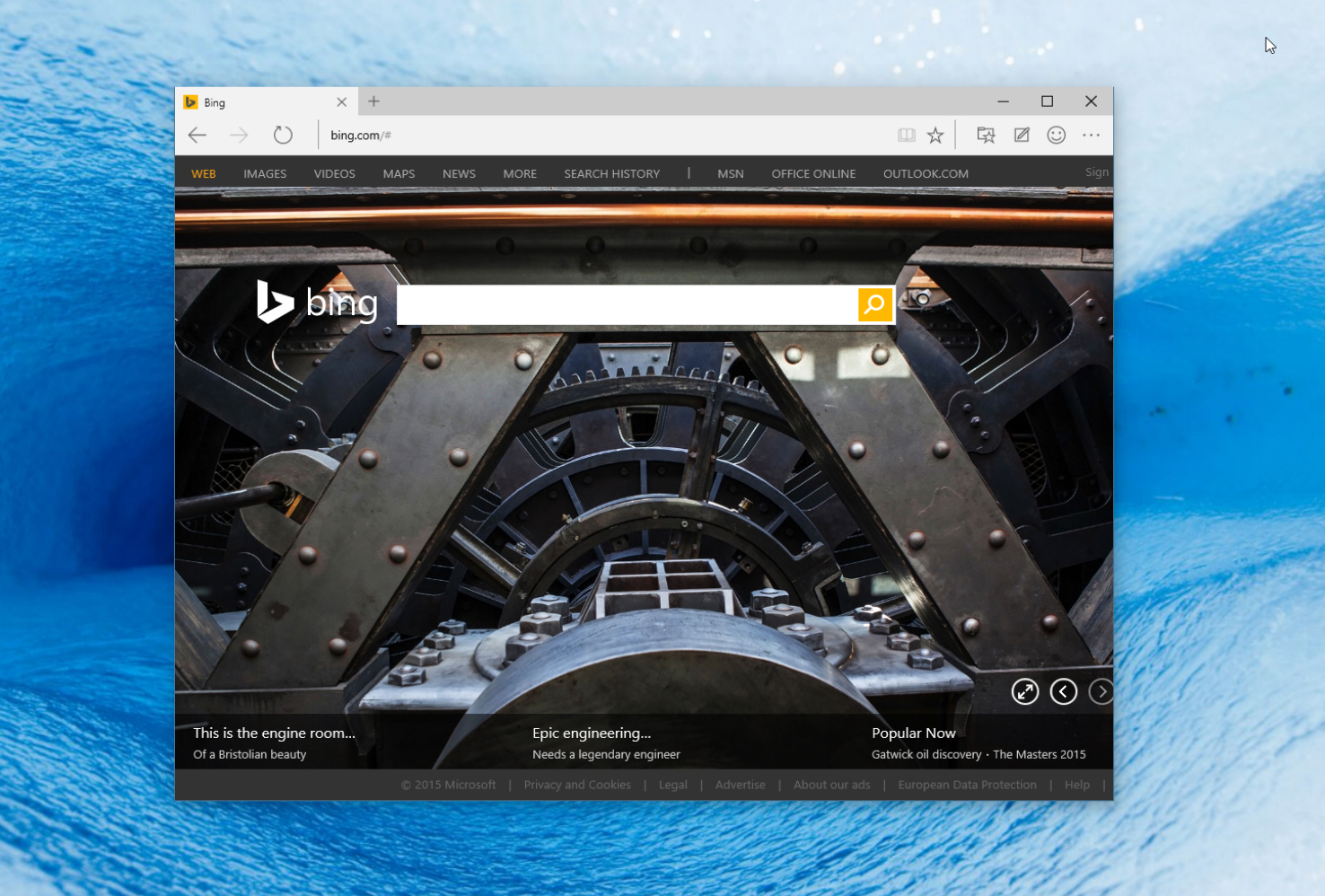
The latest Windows 10 release, Build 10049, comes with Microsoft’s new browser, Project Spartan. The software giant describes the new app as being built for the modern web, with a design that’s "streamlined and puts the focus on the page, not the browser". My colleague Mark Wilson, has a different view, describing it as "fat, chunky, and devoid of style and features".
While you can launch Project Spartan directly from the Start menu, Internet Explorer remains the default web browser in the new build. You can easily change this behavior though.
To make Project Spartan the default web browser in Windows 10, go to Start, click or tap on 'Settings' and select 'System'. Select 'Defaults'. You’ll see Internet Explorer listed as the default Web Browser. Click/tap it, and in the 'Choose an app' window select 'Project Spartan' to make it the new default.
Now when you click on a link, Microsoft’s new web browser will spring into life.
Microsoft hasn’t yet released official ISOs of Build 10049, but if you’re on the Windows Insider Fast ring you can upgrade to the latest version through Windows Update.
-

Could old video games eventually disappear altogether?
Publié: avril 9, 2015, 3:22pm CEST par Wayne Williams
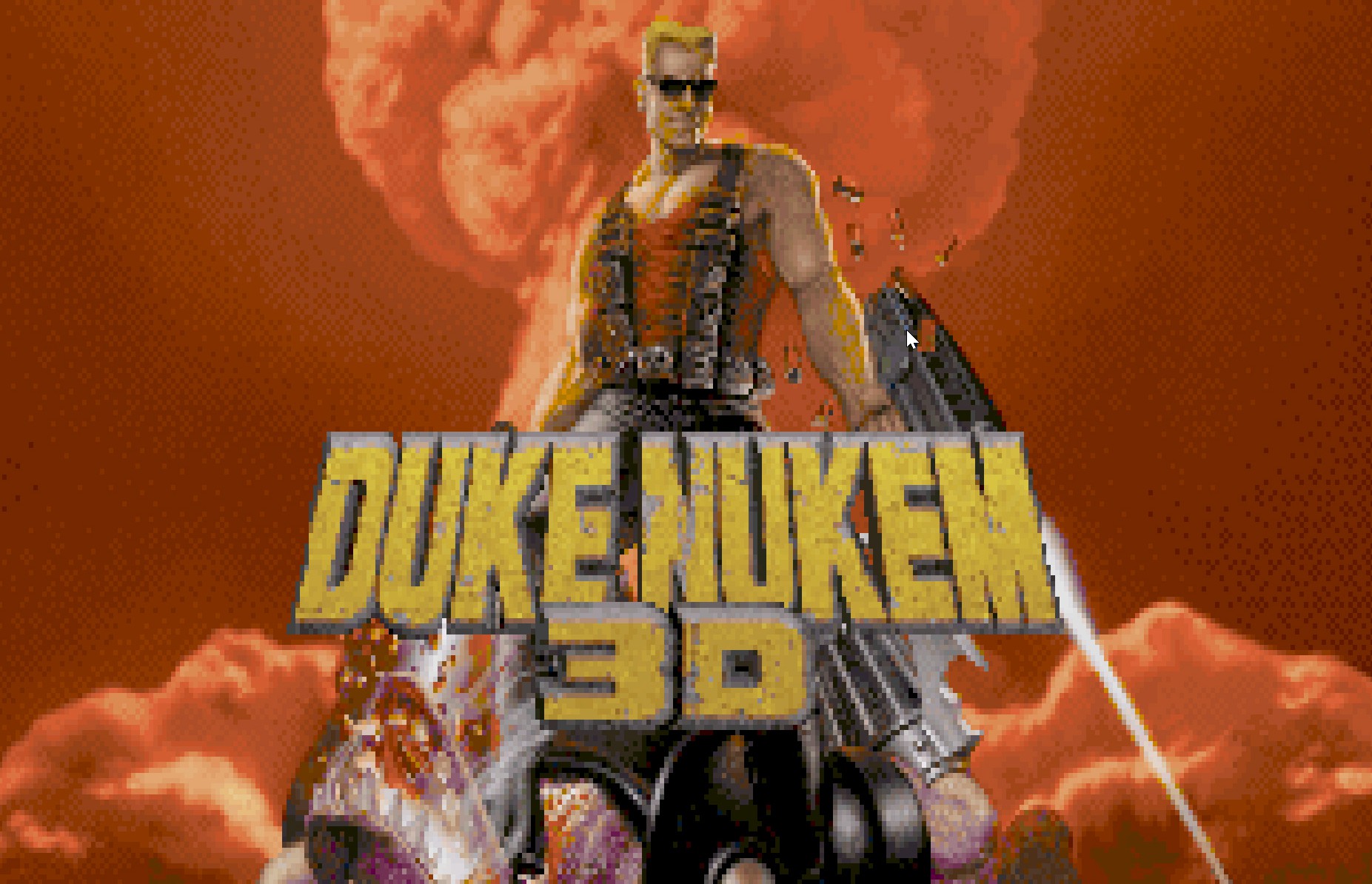
One of the many great things about the internet is it preserves the past. If you want to read about something that happened years ago, you can find that news story somewhere on the web. Photos posted over time are available online, and historical content is regularly digitized and made available to view.
If you want to revisit your youth and play old video games, the internet can help here too. You can find ROMs to play on emulators, browse 'abandonware' sites, and even play games directly on the web thanks to the likes the Internet Archive. However, companies that preserve old video games are often on shaky ground legally, with the Entertainment Software Association (the trade body that represents the major game publishers) firmly against the practice of restoring the functionality of old games -- making them playable on other systems, for example -- if they are no longer supported by the original publisher.
So what exactly is the ESA unhappy about? Well, keeping older video games playable requires "hacking", and we all know that hacking is linked to piracy, right?
The Electronic Frontier Foundation (EFF), along with law student Kendra Albert, is asking the Copyright Office for an exemption to the Digital Millennium Copyright Act’s (DMCA) anti-circumvention provisions (Section 1201) to allow games abandoned by their publishers to live on in various means.
However, the Entertainment Software Association (ESA) says that such an exemption will send a message that "hacking -- an activity closely associated with piracy in the minds of the marketplace -- is lawful", and no one wants that, of course.
The EFF says that what the ESA (along with MPAA and RIAA) are actually doing is simply "opposing anyone who bypasses game DRM for any reason, no matter how limited or important", which includes those people who are simply trying to preserve old, no longer commercially available games.
The EFF states that this exemption is vital, because without it "server shutdowns, and legal uncertainty created by Section 1201, their objects of study and preservation may be reduced to the digital equivalent of crumbling papyrus in as little as a year". Certainly, if the ESA gets its way and blocks the exemption, the legal situation for those who maintain and preserve old games will definitely be shakier.
The EFF regularly requests exemptions to the Digital Millennium Copyright Act and in the past has successfully secured ones for device unlocking, jail breaking, ripping videos for remix purposes, and more. So far this year it has requested six exemptions in four separate categories -- security research, as well as repairs and modifications, for cars; ripping of video from DVDs or Blu-ray disks, as well as online streaming services, for remixes; jail breaking of phones and tablets; and of course the "reconfiguration of video games that are no longer supported by their publisher".
-

Microsoft confirms the Windows 10 Start menu will be resizable
Publié: avril 8, 2015, 11:15am CEST par Wayne Williams

The thing I dislike most about the Windows 10 Technical Preview -- and there are a few design points I’m really not a fan of, including those ridiculous icons -- is the current Start menu. In the latest builds this is a fixed size (with a full screen option), that takes up too much space, and is very tile heavy. If you don’t like, or simply don’t require, the Modern UI, it’s awful.
The Start menu in the first official build was far superior, and could be resized in different ways. It would automatically grow or shrink depending on how many (or how few) tiles you had. If you don’t like tiles, all you had to do was remove them, and it would turn into a traditional Windows 7-style menu. When Microsoft removed this feature, Windows 10 became much poorer for it. Well, the good news is the resizable menu is definitely coming back.
We don’t have any real details regarding the return of this Start menu, only that it will happen before the OS hits the RTM milestone.
Asked on Twitter if the Start menu will be resizable, the head of the Windows Insider program, Gabriel Aul, replied with an emphatic "Yes", accompanied by a smiley face, suggesting this is something that Microsoft is aware that people really want.
@Vlad2989 Yes :-)
— Gabriel Aul (@GabeAul) April 7, 2015
Windows 10 is set to launch in the summer which really doesn’t give the tech giant long to finalize things, but it’s great to hear that it may actually become the OS that I, and many others, are hoping for. Now we just have to trust Microsoft can manage to make Windows 10 a lot less gray before launch.
-

Microsoft vs. Apple -- Which has the most loyal and satisfied customers?
Publié: avril 7, 2015, 2:35pm CEST par Wayne Williams
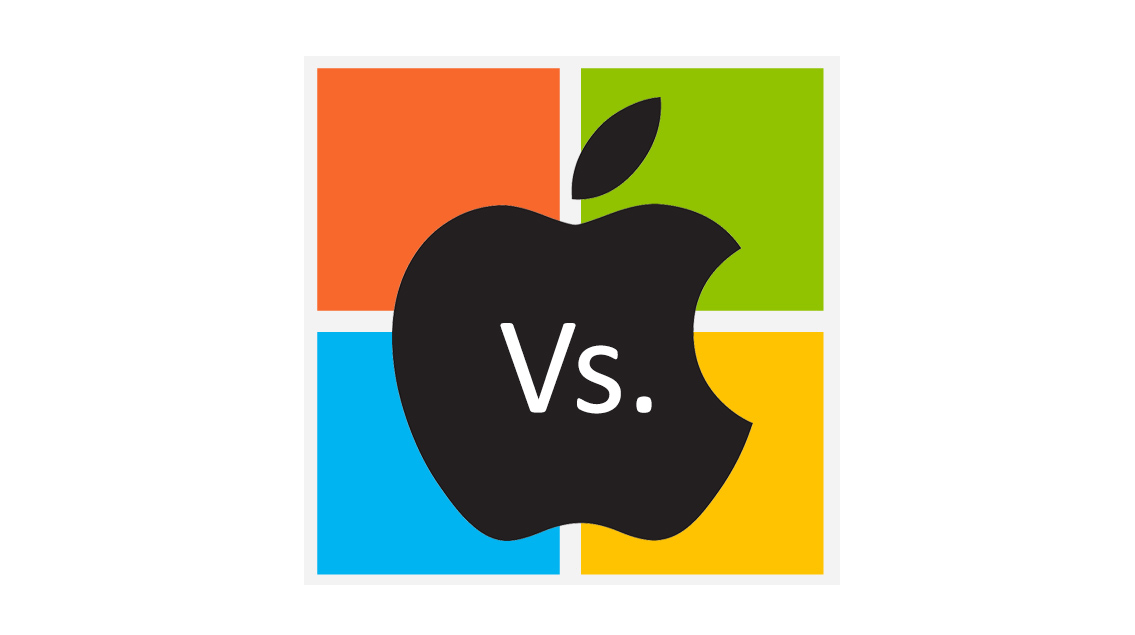
When you think of the great tech rivalries, it’s unquestionably Microsoft vs. Apple that springs to mind -- after all the two firms have been battling it out for close to 40 years. Microsoft was the dominant force for much of that time, until Apple surged ahead to become the most valuable company in the world.
Both tech giants have massive, and incredibly loyal fan bases. When we write something negative or overwhelming positive about either company’s products on BetaNews, the fanboys come out in force, accusing us of bias or being on one of the firm’s payrolls. So surely it’s time to find out which company has the most loyal and satisfied customers -- will it be Microsoft or will it be Apple? Place your bets now…
SurveyMonkey has launched a new Benchmarks product that is designed to let businesses of any size understand how they stack up to their closest competitors when it comes to key metrics. And to show off its capabilities, SurveyMonkey looked at the Customer Loyalty and Customer Service Satisfaction data for Apple and Microsoft.
According to the results, it was an overwhelming win for Apple, which shows the Cupertino, Calif.-based company scoring 28 in Custom Loyalty (this is measured using the net promoter scores (NPS) metric which looks at whether or not customers are recommending a product or service), Microsoft suffered badly here, with a score of -8.
Apple also managed 41 percent in Customer Service Satisfaction, ahead of Microsoft on just 19 percent.
The chart doesn’t just look at those two companies though, it also includes Samsung, Adobe and Intuit, all of which apparently have more loyal customers than Microsoft, and most of which (with the exception of Adobe), have more satisfied customers too.
You can view the full infographic here. Feel free to pour scorn on the findings in the comments below.

-

BBC officially releases Doctor Who episodes on BitTorrent
Publié: avril 2, 2015, 9:39pm CEST par Wayne Williams

Although BitTorrent’s reputation is as a means to download music and movies illegally, the company is trying to change that by offering original, and legal content via paid "bundles". It scored a success in 2014 when it released Radiohead’s Thom Yorke's new album in this way, and later in the year it will be debuting its first original television series, Children of the Machine.
But today BitTorrent announces a really impressive coup -- the BBC has agreed to put out an official digital Doctor Who box-set via the file sharing network.
Whovians will be able to download or stream a 10-minute preview of the first 2005 episode, Rose, and also watch an introductory video from current Doctor Who, Peter Capaldi, as part of a free bundle. They’ll then be able to unlock the full box-set for $12 (£8.10).
The episodes included in the bundle are: Rose, The Empty Child, The Doctor Dances, The Girl in the Fireplace, Blink, The End of Time (two-parter), The Vampires of Venice, The Doctor's Wife, The Rings of Akhaten, The Day of the Doctor, and Listen. If you’re a Doctor Who fan you’ll recognize those as being amongst the best episodes in the modern era.
Alongside those, there are also five introductions from Capaldi, who helped choose the included episodes, a Doctor Who: Earth Conquest -- The World Tour documentary and a PDF episode guide.
"Our entire mission is to get content out legitimately to as many fans as we can around the world. We're in a lot of territories, but we're not everywhere, and not everybody has access to paid-for TV", Julia Kenyon, director of drama brands at BBC Worldwide, told The Guardian. "This is a really lovely way to extend it even further so that more of our fans can get our content. We have quite a young audience. They're very digital-savvy, and a lot of them access content in the digital space, so understanding their habits, and going where they are is very important for us".
If this is a success for the BBC there’s every chance the corporation will look to release further digital boxsets via BitTorrent, with Top Gear being an obvious follow up. Who knows, maybe we’ll even get to see the final episodes of the current series which the BBC shelved following the Jeremy Clarkson "fracas".
A Decade of the Doctor is available to download now from BitTorrent Bundle.
-

Windows 8.x is flatlining
Publié: avril 1, 2015, 11:51am CEST par Wayne Williams

With Windows 10 arriving in the summer it’s no surprise to find that Windows 8.x’s growth has stalled (not that the tiled OS ever really took off in the first place).
According to NetMarketShare, Windows 7 was the big usage share winner in March, going from 55.99 percent to 58.04 percent, an increase of 2.05 percentage points. Windows XP, still shedding users, lost 2.21 percentage points, and is now on 16.94 percent. Which, naturally, is still way more than Windows 8.x.
Talking of the tiled OS, Windows 8 went from 3.55 percent to 3.52 percent, a drop of 0.03 percentage points, while 8.1 rose from 10.49 percent to 10.55 percent, gaining 0.06 percent. In total 8.x gained just 0.03 percentage points. This flatlining is a trend we’ll likely see continuing until Windows 10 arrives, after which Windows 8.x will go into steep decline (there's a flashing neon "do not resuscitate" sign over its head).
Windows 10 Technical Preview now sits on 0.9 percent. It was at 0.8 percent in February, so it should hit the dizzying heights of 1 percent next month, which is pretty good for an early preview.
Photo Credit: Tripplex/shutterstock
-

Microsoft announces Surface 3 -- thinner, lighter, and runs full Windows
Publié: mars 31, 2015, 3:38pm CEST par Wayne Williams
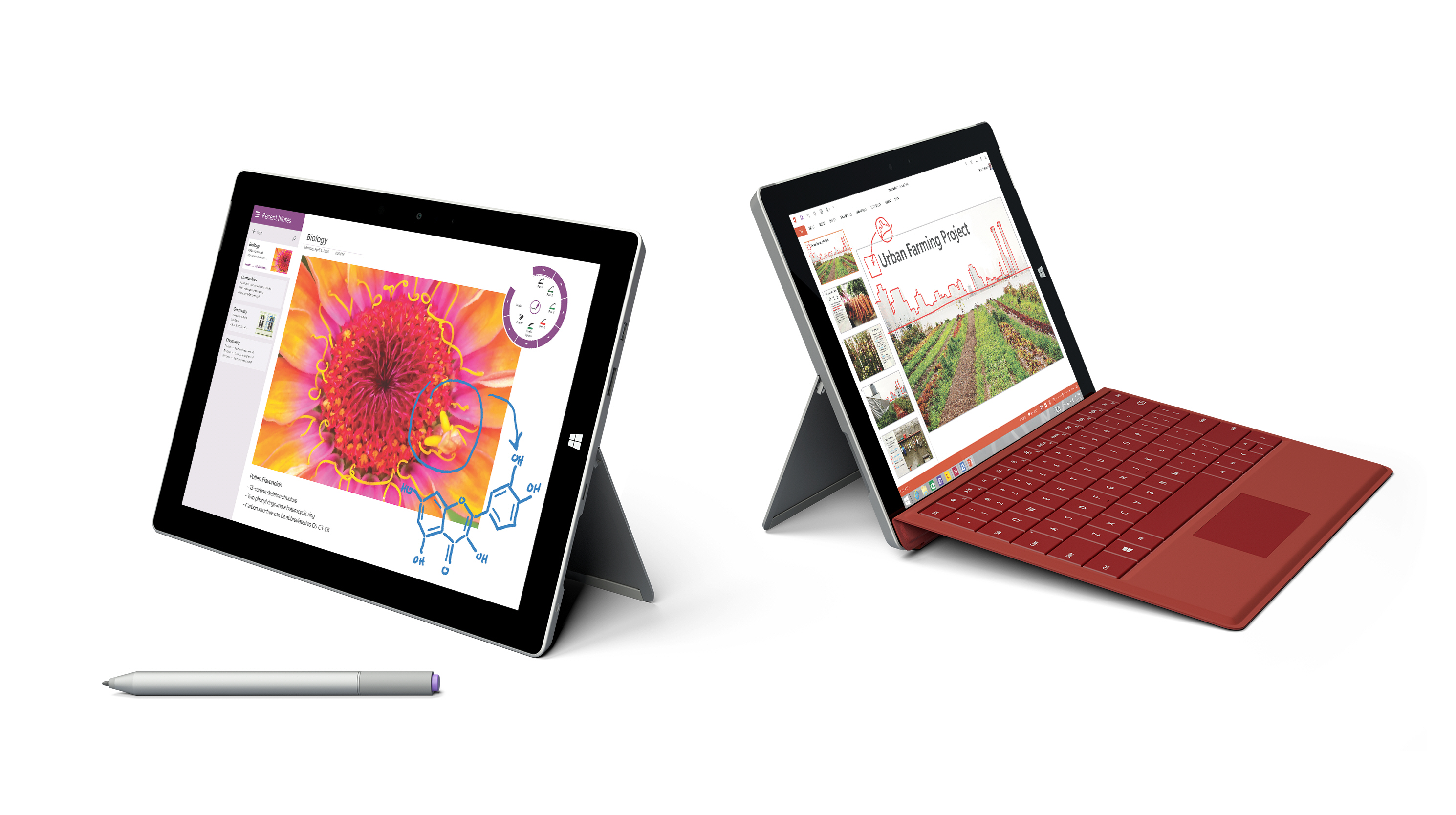
Surface Pro 3 is the tablet that can replace your laptop, according to Microsoft. Assuming you spend money buying a Type Cover for it of course. My colleague Brian Fagioli absolutely loves his Surface Pro 3, but it’s not cheap.
If you fancy the slate, but your budget won’t stretch to the asking price, there’s good news -- Microsoft has just announced a cheaper follow up to Surface 2, called, naturally enough, Surface 3, and it’s cheaper than the Pro version, and doesn’t run Windows 8.x RT like its predecessor.
The new tablet sports a smaller 10.8-inch screen, runs full Windows 8.1 (and will run Windows 10 in time), and costs from $499, for which you get 64GB of storage and 2GB of RAM, and a year’s subscription to Office 365.
It's powered by a quad-core Intel Atom x7 processor and the screen supports pressure-sensitive pen input, like the Surface Pro 3. It is thin (just 8.7 mm) and light (1.37 pounds or 622 grams) too. Obviously it's nowhere near as powerful as the Surface Pro 3, but it's a good compromise if you can't afford the larger device.
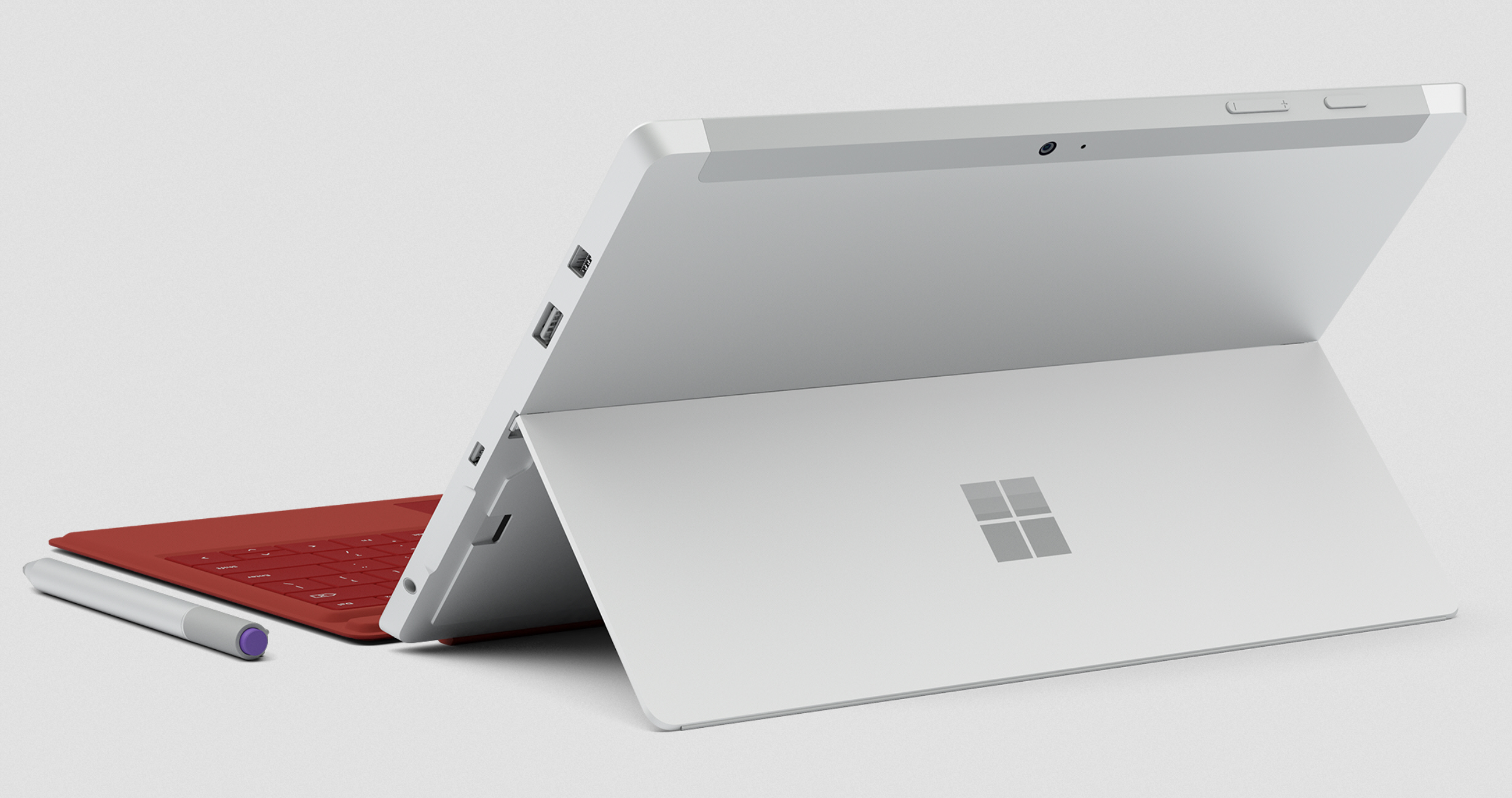
Surface 3 also has front- (3.5MP) and rear-facing (8MP) cameras that both capture 1080p video. It's charged via microUSB, like most (non-Apple) phones. It includes a full-size USB 3.0 port, a Mini DisplayPort and a microSD card reader.
As you’d expect, it doesn’t come with a keyboard, that’s extra.
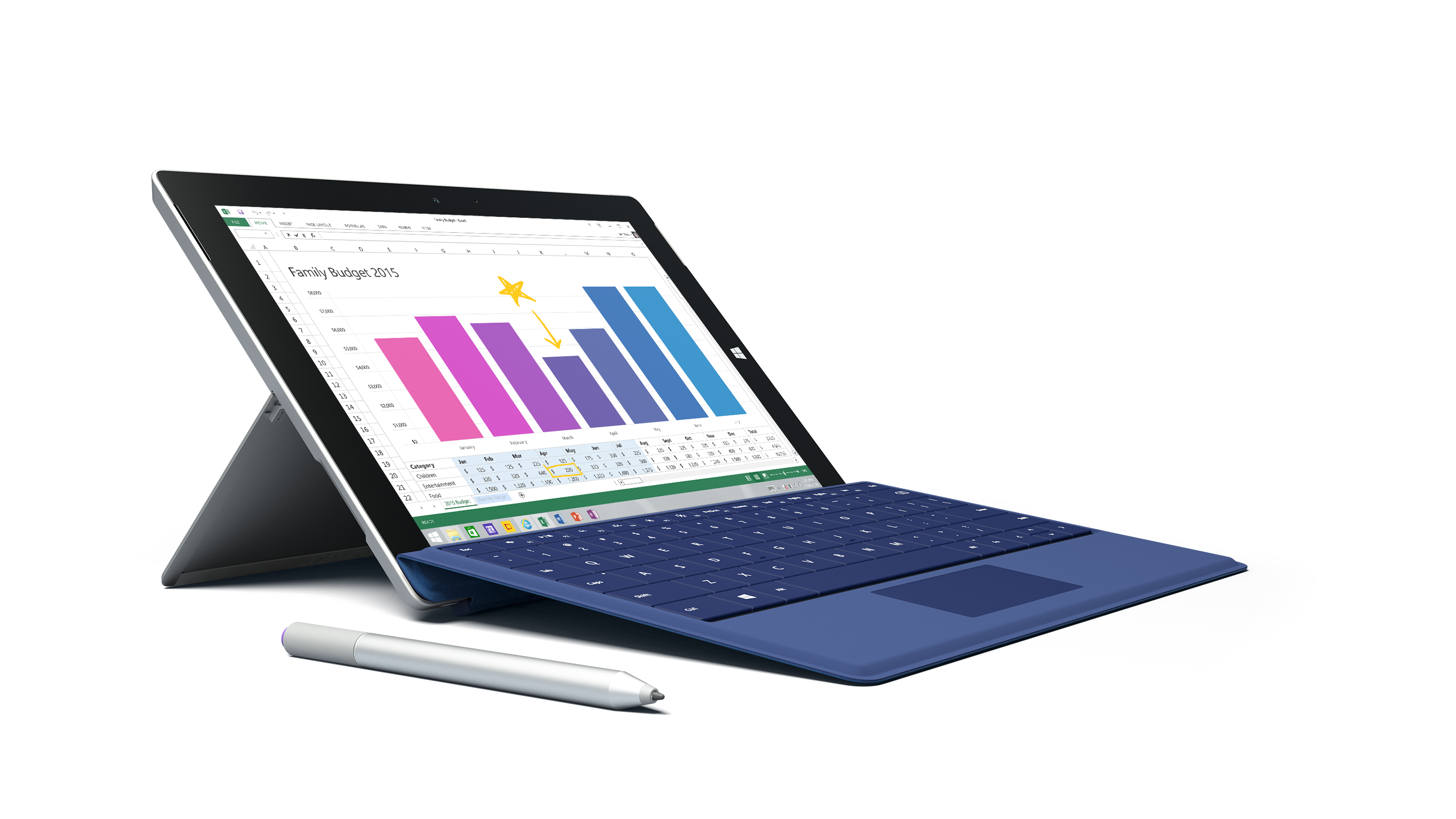
There's also a mobile-broadband version, called the Surface 3 (4G LTE).
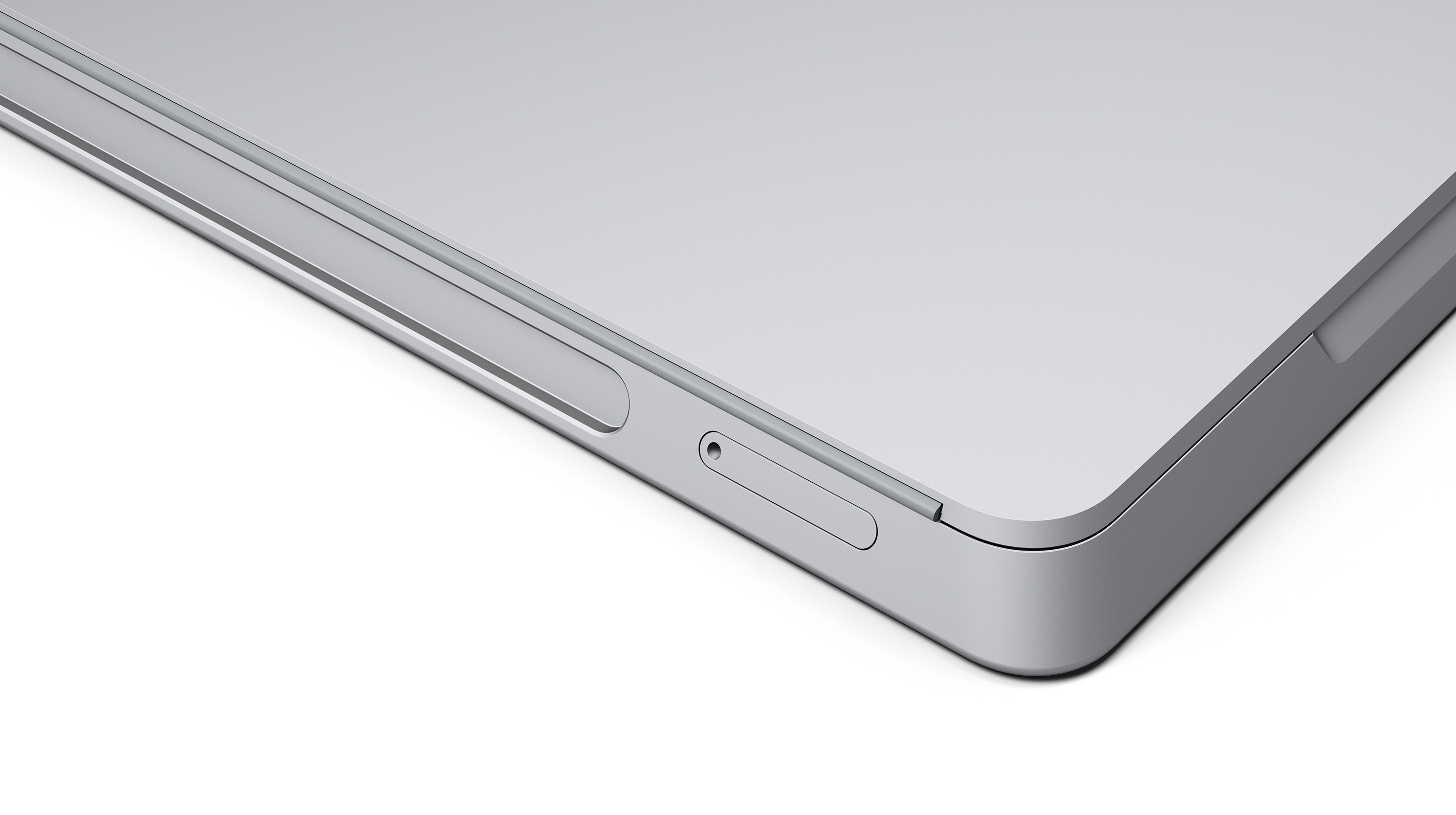
It’s available to pre-order today and will ship globally on May 5.
Will you buy the new Surface 3? Tell me in the comments.
-

50 shades of gray -- hands on with Windows 10 Build 10049, the dullest Windows ever
Publié: mars 31, 2015, 1:14pm CEST par Wayne Williams
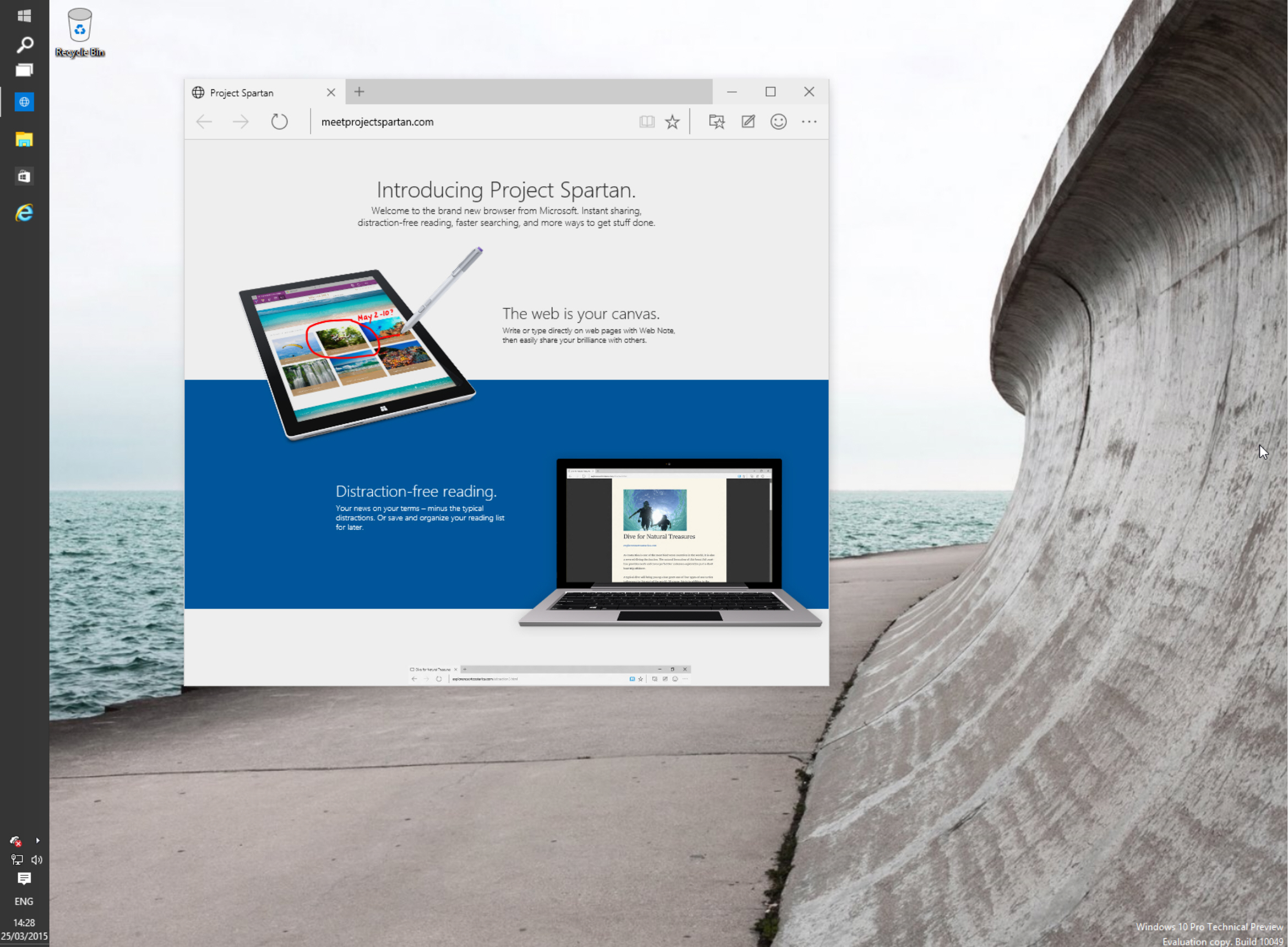
We might have waited ages for a new build of Windows 10, but a mere fortnight later and Microsoft has rolled out yet another update, again initially only to Windows Insiders on the Fast ring.
The star of this build is Project Spartan, Microsoft’s new web browser. It’s an early version, but it’s a good look at what the tech giant has been working on, and of course it comes with the new rendering engine. That’s not all that’s new in this latest OS build, however. Let’s take a more detailed look.
Since Spartan is the main (almost only) addition in Build 10049, let’s look at that first. The browser looks much as you might expect it to, with big square tabs at the top, and the address/search bar just underneath. To the right is a button for reading view (displays just the story, removing any distractions from around it) and a star so you can add a page to favorites or reading list. There’s a button for accessing favorites, reading list, history and downloads, one for making web notes, and another for providing feedback. As you use the browser, you’ll be asked questions, such as how easy it was to find certain features.
A More button gives you access to additional options, including Settings, which lets you customize the browser. Unlike Internet Explorer, Spartan is pretty basic which, it could be argued, is no bad thing in a browser. It does what you want it to, and it’s easy to use. Do I see myself using Spartan as the default browser? No, but it has potential and it’s not (in my opinion at least) awful like the Modern version of IE found stinking up Windows 8.x. That said, while the browser’s project name is quite exciting, Spartan looks as boring as hell.
So what else has changed in build 10049? Well some of the included apps have had a makeover and now appear in white and gray, rather than dark as they did previously. Calculator, Alarms & Clock, and Voice Recorder all sport the lighter look, and frankly it’s dull, dull, dull. Microsoft might be shooting for classy here, but the end result is just bland. A few color accents would make a massive difference. Would it hurt to make the record button in the Voice Recorder red, rather than gray?
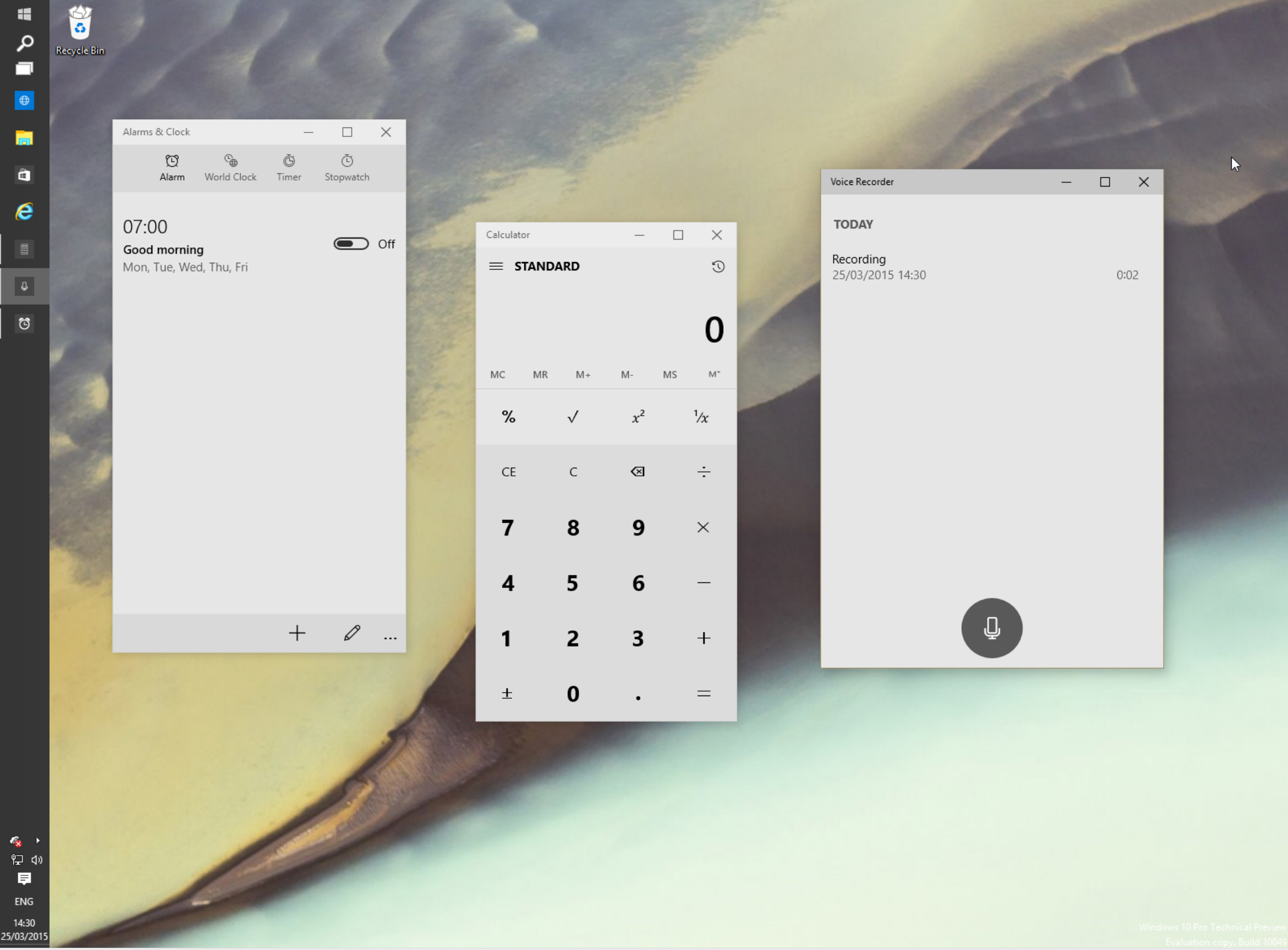
Windows XP was, at launch, described as a Fisher Price operating system with its bright, colorful (and child-like) buttons. Windows 10 seems to be the flip side of that, with each new version becoming more boring, and depressing -- visuals wise -- than the last.
There’s no option to switch between the light and dark themes in the apps, but hopefully that will be introduced in a later build.
And the option to make everything look and feel a lot happier would be good too!
Have you tried Build 10049 yet? What’s your view of it, and Spartan? Do you think it’s classy, or 50 shades of bland? Comments below.
-

How to create a bootable Windows 7, Windows 8.1 or Windows 10 USB flash drive
Publié: mars 26, 2015, 3:32pm CET par Wayne Williams
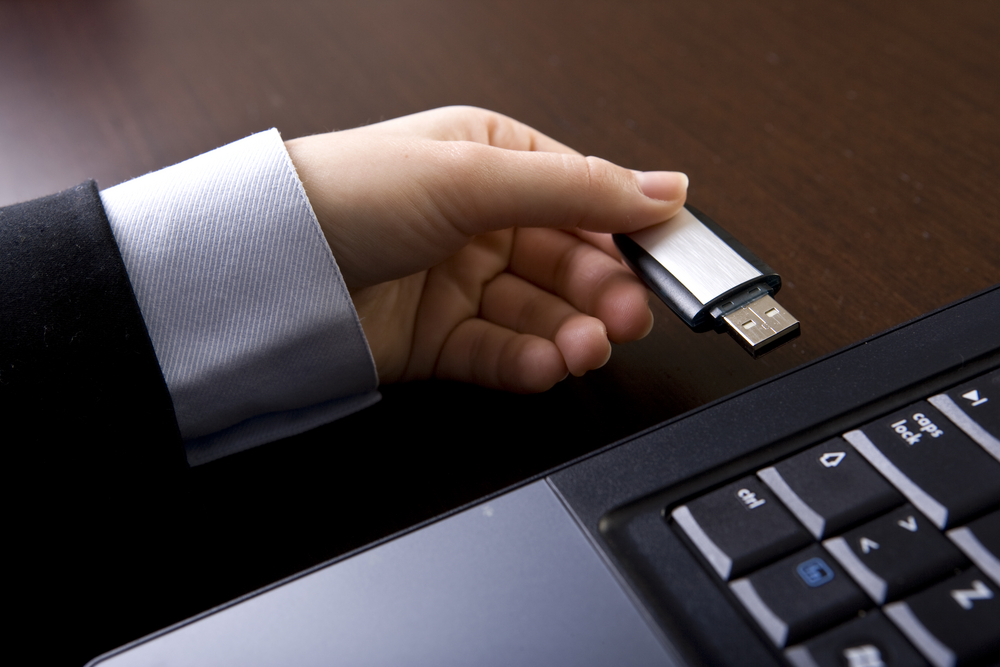
If you want to install Windows from scratch, you have two choices -- you can install the OS from a CD/DVD or from a USB flash drive. The latter is the better option, especially as optical drives are becoming something of a rarity these days.
The process of creating a bootable USB flash drive for Windows 7, 8.1 or 10, is quick and easy. Here’s how to do it.
What you’ll need:
- A Windows ISO image file. Microsoft provides these for free. Follow the instructions for Windows 7, Windows 8.1, or Windows 10 to get the ISO file(s) you require.
- A Windows product key for your choice of OS.
- A copy of Rufus.
- A USB flash drive. This needs to be a minimum of 4 GB for the 32-bit Windows and 8 GB for the 64-bit Windows. The bigger the drive, the faster everything will be.
- A Windows PC.
Launch Rufus, and select your USB drive in the drop down box. Obviously make sure you select the right drive. Click the disc button to the right of the ISO Image box and locate the downloaded ISO file.
Now you have two options. You can create a bootable USB flash drive, or Windows To Go. Select the former option to create installation media, or the latter option if you want to be able to run Windows directly from the flash drive. If you do select the second option you will need a very fast drive. More importantly, the target drive needs to have the FIXED attribute. This is a hardware property that can only be changed using custom tools that may not be available for your drive. Feel free to Google "Flip the removable bit" but don’t expect too many great solutions.
Click Start and the drive will be formatted and the files copied over to the memory stick. To boot from the drive, plug it in and restart your PC. Make sure your computer is set to boot from the USB device. You can change the boot order in the BIOS if it isn’t.
You can of course also run an inline upgrade from the flash drive directly from inside Windows.
-

ZTE Blade L2: An affordable 5 inch quad-core Android smartphone [Review]
Publié: mars 26, 2015, 12:06pm CET par Wayne Williams
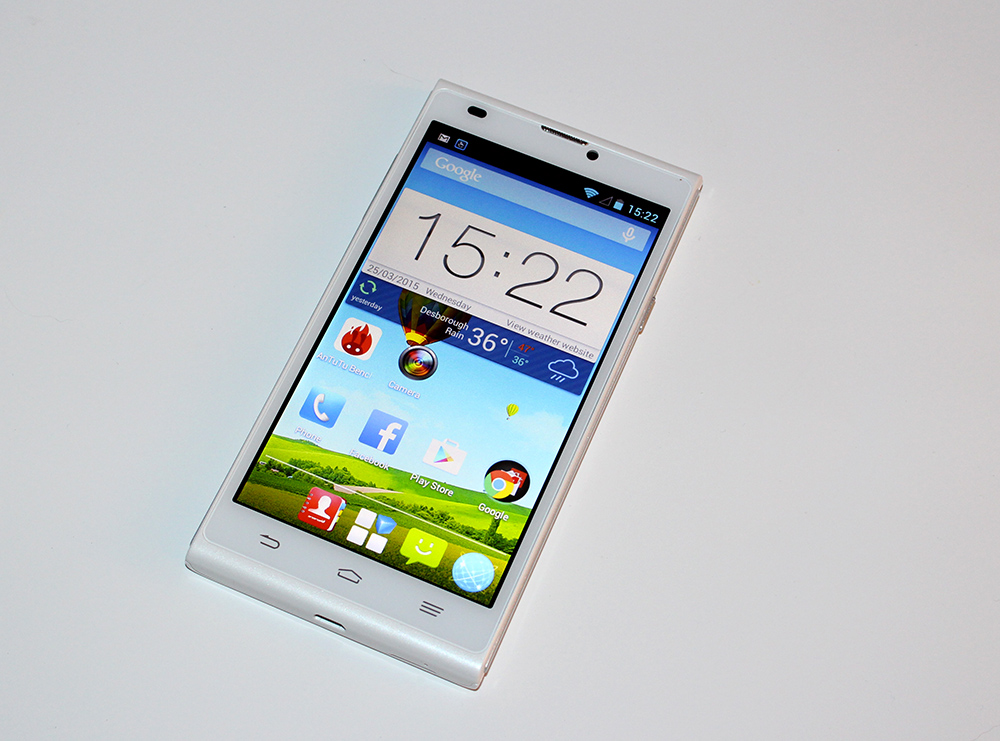
Smartphones have become such an important part of our lives that it makes sense to get the best make and model you can. However, not everyone can afford an iPhone 6 or Samsung Galaxy S6. Fortunately, there are plenty of great budget smartphones to choose from, and these days a budget price doesn’t have to mean a budget experience.
The Blade L2, from Chinese firm ZTE, is a great example. It’s priced at just £89.99 off contract, and for that you get a handset with a quad-core processor and a 5-inch screen.
The phone won’t win any awards for style, but it’s decent looking. The white plastic case has a bit of silver trim, although it’s colored plastic not chrome -- but given the price that’s forgivable.
The volume button is on the left, and the on switch is on the right. They are perfectly positioned, making the phone feel comfortable in the hand. It weighs 130g, which is reasonable for a phone of this size, and measures 142.5 by 72.2 by 8.95 mm.
The headphone socket is at the top of the phone, with the microUSB charger underneath. The speaker is on the rear, and gets covered by your hand when you’re holding it, which makes it a rather strange design choice.
The back is removable, and clips on quite tightly. Removing it is easy enough, but you do fear that you might break some clips while doing so. Fortunately, you won’t be removing the back too often as there’s really no need to do so.
Once you’ve inserted your SIM card, and an optional MicroSD card, your work is done. There’s a 2,000mAh battery in there, but -- as the wording on it says - it’s "unremovable". The battery also helpfully informs you that if you need to restart the phone you can do so by pressing the power key for 15 seconds.
Right, let’s take a closer look at what you get for your money. The heart of the ZTE Blade L2 is a MediaTek MT6582M Soc, with an ARM Cortex-A7 quad-core processor chip clocked at 1.3GHz and an ARM Mali-400 GPU. This is backed up with 1GB of RAM.
Our AnTuTu benchmark test gave the ZTE Blade L2 a score of 20,912, which is decent and actually puts it above the considerably more expensive Moto G (2014) which managed 17,975.
You get a paltry 4GB of storage so you really will want to be adding a microSD card to boost this. Connectivity comes in the form of Wi-Fi b/g/n, and Bluetooth 3.0 -- yes, Bluetooth 3.0 rather than 4.0 which is more energy-efficient and found on most devices these days.
The 5-inch screen has a 480x854 resolution which equates to a rather low 196ppi pixel density, and I had to crank up the brightness as the default setting is pretty dull. The viewing angles aren’t great, but good enough.
Cameras-wise, there’s a 5MP shooter on the rear with an LED flash, and a 0.3MP webcam on the front. I wasn’t expecting great things from the cameras to be honest, which is just as well. Those taken with the main camera are reasonable, although the device is a little slow to focus. Images are quite soft, and much better in daylight than those taken indoors. There’s a selection of pre-set camera modes on offer which are worth playing around with. You can also record 720p video at 30fps with it.
Photos taken with the front camera are pretty poor, although just about acceptable outdoors. If you take a lot of selfies this is probably not the camera for you. It’s of more use for video calling, but again better in good lighting.
You can probably expect a full day and a half of battery life from the phone, even with the brightness ramped up. I’ve managed to get two days from it, albeit with light use.
The ZTE Blade L2 runs Android 4.2.2 Jelly Bean which was first released two years ago and has been usurped by KitKat as the most popular Android flavor. ZTE hasn’t done much tweaking to the OS -- you have to long press the front screen to unlock the device (rather than swiping) and there’s a TouchPal keyboard which is enabled by default. There are also Torch and ToDo apps, Kingsoft Office, and mapping app Navigate 6 which offers free downloadable maps of the world and a 30-day trial of Navigation, Traffic Information, and Speed Cameras.
Verdict
All in all, the ZTE Blade L2 is a decent phone. It’s a good size, and while some intensive games lag a bit it’s fast enough for general day-to-day use. The 4GB storage is nowhere near enough, but you can expand it by up to 32GB via microSD, which is definitely recommended.
It’s priced at £89.99 from Ebuyer.
Image credit: Wayne Williams
-

Don't go to Xtube without protection -- the adult site could give you a nasty infection
Publié: mars 26, 2015, 9:07am CET par Wayne Williams
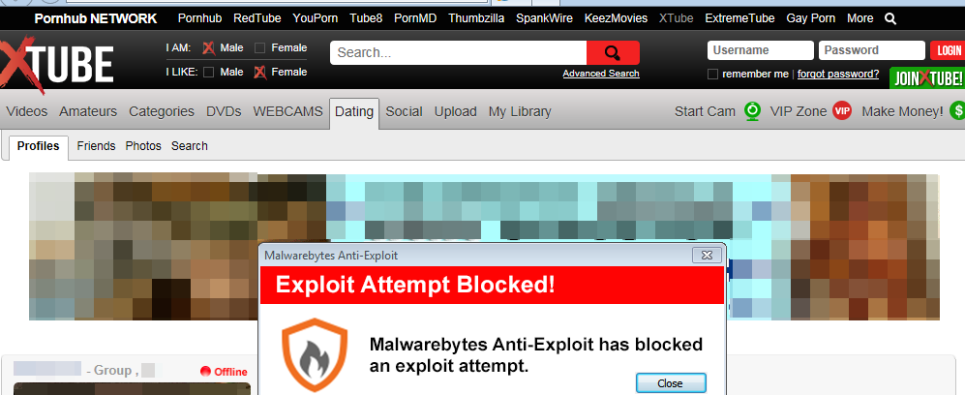
A month ago, Malwarebytes reported that adult site RedTube had been compromised and was infecting unsuspecting visitors with malware. That issue was swiftly fixed, but now the security firm reports another adult site, Xtube, is currently serving exploits.
While attacks of this nature usually come via malicious advertising (malvertising), in this instance the nasty snippet of code has been injected directly into Xtube itself.
Visitors get redirected to an exploit landing page via rotating domains. The payload has been identified by Malwarebyes as Trojan.MSIL.ED.
Adult sites are a fairly obvious target for these kinds of attacks due to their enduring popularity. Xtube has an estimated 25 million monthly visitors, and the site is raked 358 in the United States, and 543 globally.
If Xtube acts as swiftly as RedTube did, then this will hopefully be a short lived problem, but visitors should ensure they avoid the adult site -- or use protection -- until it is.
-

How to install Windows 10 March Build (10041) on Oracle VirtualBox
Publié: mars 25, 2015, 3:28pm CET par Wayne Williams
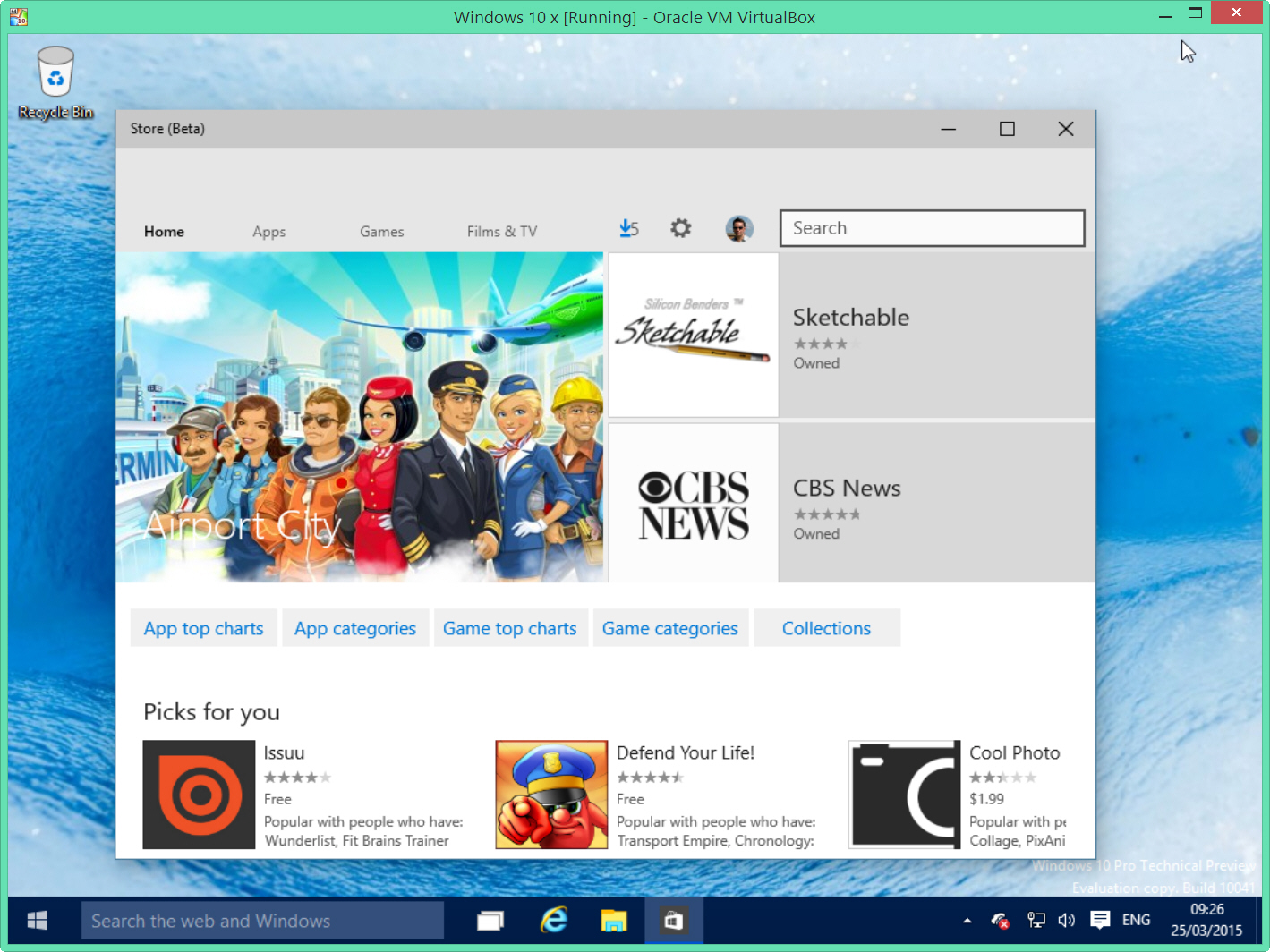
Microsoft has just released ISO files for latest build of Windows 10 Technical Preview. There aren’t a massive amount of new features in Build 10041, although the Start menu gains transparency, you can drag and drop apps to Start, virtual desktops have been improved, and Cortana is now available in countries outside the US.
As with the previous releases, Build 10041 is still a very early version of the OS, so you wouldn’t be advised to run it as your main operating system, and while you could set it to dual boot, running it in a virtualized environment is probably a more sensible idea.
The process is very simple -- all you need is a copy of Oracle VM VirtualBox (make sure you have the latest version) and a Windows 10 Technical Preview ISO.
To set up Windows 10 in VirtualBox, launch the software and click New in the Manager window. In the Create Virtual Machine dialog box enter "Windows 10" as the name of the operating system. Select Windows 10 as the version. (Choose Windows 10 (64bit) if you have a 64-bit ISO). Previously, when installing the Technical Preview in VirtualBox you had to select Windows 8.1 as your operating system, but the software has been updated to recognize Windows 10 now.

Hit Next, then set the Memory Size. The recommended figure should be fine. On the following screen choose to "Create a virtual hard drive now" and click Create. Accept VDI (VirtualBox Disk Image) as the hard drive file type. You’ll be asked if you want the new virtual hard drive to be dynamically altered (it will resize as required) or a fixed size. The latter option is faster, so select that.
Click Create and VirtualBox will begin building the drive.
When done, click the Start button in the Manager. In the "Select start-up disk" window, click the folder icon and navigate to the Windows 10 ISO.
Click Start and Windows 10 should begin to load. Select your language settings, then click the "Install now" button. Accept the license terms. Choose the "Custom: Install Windows only (advanced)" option.
Click Next, and the installation process will begin, rebooting as necessary.
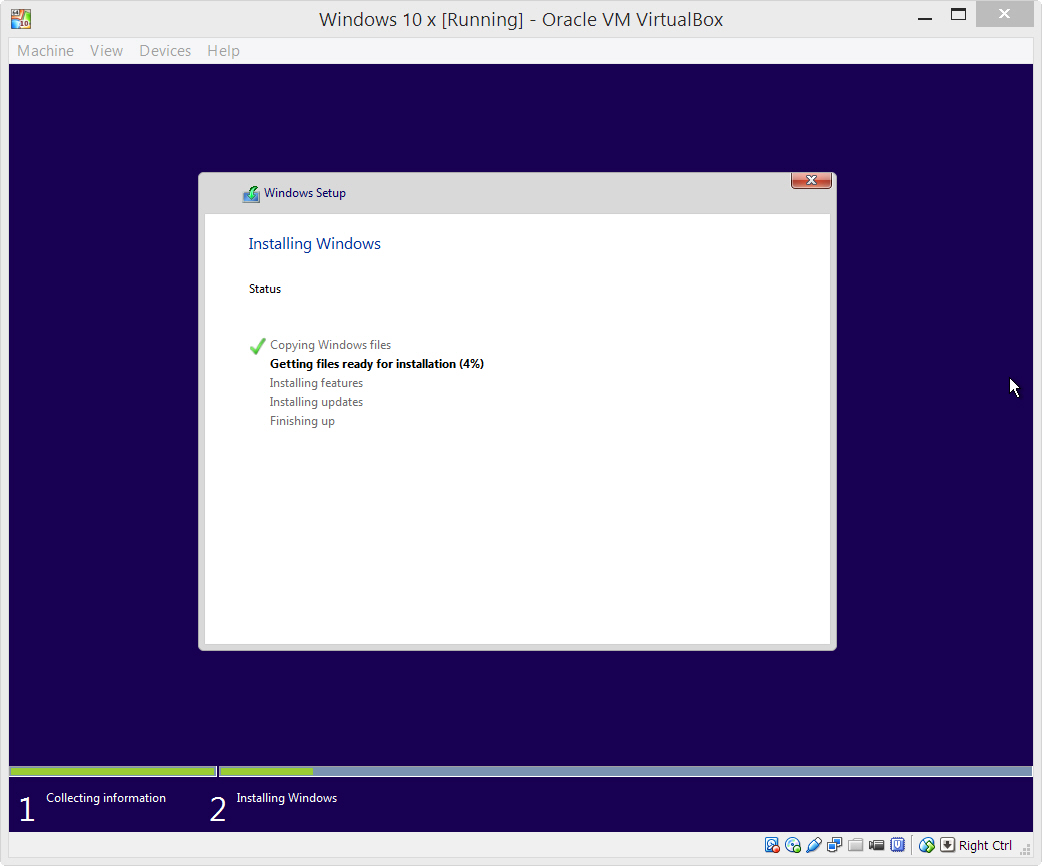
When it’s done, you’ll be given the option of using express settings, or customizing things. It’s easiest to select the first one. Sign in with your Microsoft account, says if you want to use Cortana, and then finalize everything else.
Windows 10 will start and you can begin exploring the new OS.
If you want to resize the window, click View in VirtualBox and select Fullscreen or Scaled Mode (which is my preference).
The simplest way to shut down Windows 10 when you no longer need it is to click the X in top right corner of VirtualBox and select "Power off the machine".
You can find some troubleshooting tips here. Also, note if you’re running Hyper-V in Windows 8.x (Microsoft’s built in virtualization tool) you’ll need to disable it in order to be able to run VirtualBox.
-

Download the ISO image of Windows 10 Build 10041 directly from Microsoft
Publié: mars 25, 2015, 9:25am CET par Wayne Williams

When Microsoft released the latest build of Windows 10 Technical Preview it only made it available to Windows Insiders on the Fast ring, and only through Windows Update. It has now made it available to those on the Slow ring too, which means there are now official ISO files to download.
If you need to perform a brand new install -- either on a spare PC, or to run in a virtualized environment -- then grabbing the ISO image file is the easiest, not to mention quickest option.
There’s a separate page to download the ISO files for the Windows 10 Technical Preview March Update as Microsoft is calling it.
Go here, choose the language and version you want, and the download will begin.
-

Smartphone owners aren't as privacy minded as they think they are
Publié: mars 24, 2015, 1:47pm CET par Wayne Williams
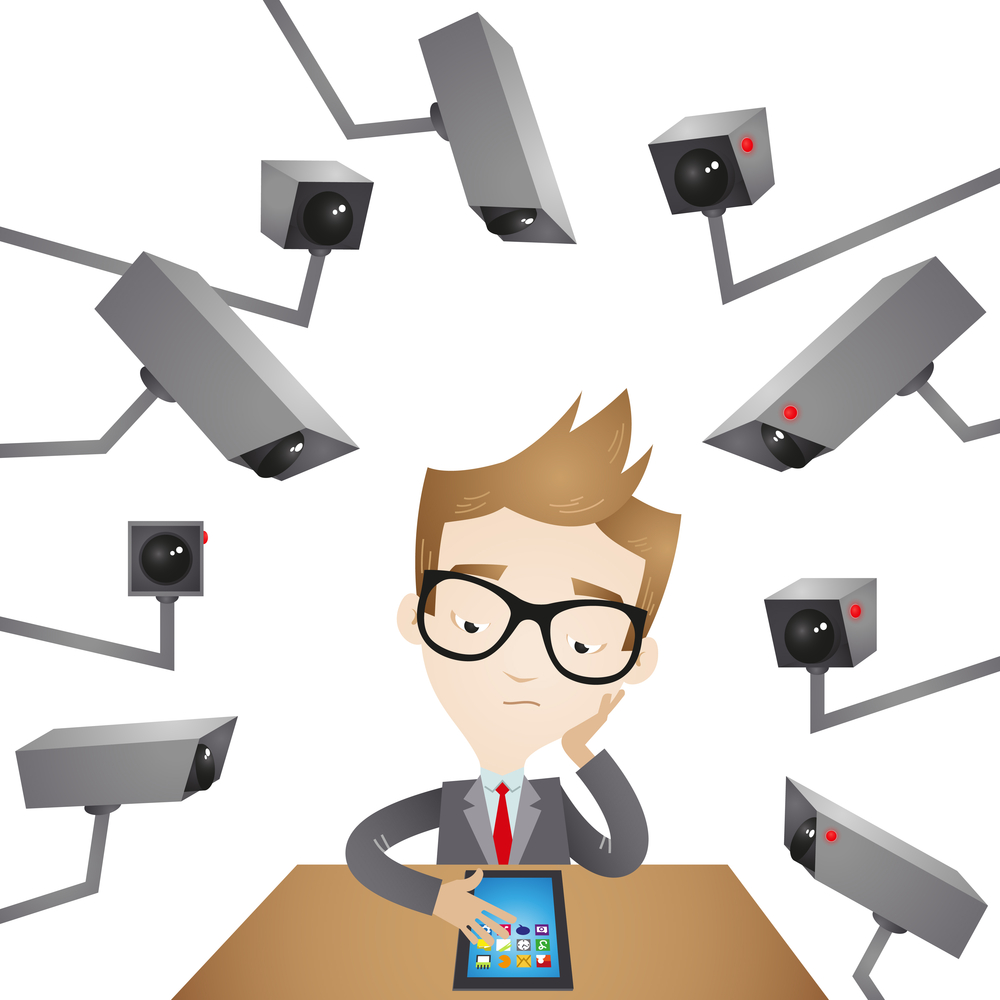
A Pew Research study published last week on Americans' awareness of government surveillance programs revealed just 15 percent of American adults have changed their mobile phone habits in the wake of Edward Snowden's revelations.
Security firm Lookout has just released the findings of its study on mobile device use, and that echoes Pew Research’s findings, showing that while many mobile phone users claim to be highly aware of privacy issues, few actually do enough to safeguard their data, and many are willing to trade privacy for convenience. There’s bad news for businesses too, as a huge percentage of smartphone owners admit to not caring too much about protecting work data on their devices.
Lookout’s Mobile Privacy IQ study surveyed smartphone owners in the United States and found that 41 percent rated their mobile privacy IQ as "above average" or "well above average". 50 percent claimed to be just "average", while a mere 9 percent admitted to being "below" or "well below average".
Millennials claim to be the most privacy conscious age group, while older generations are the least. No surprise there really.
However, while being confident in their knowledge of mobile privacy, it turns out those who ranked themselves as well above average were likely to partake in risky mobile behavior with 35 percent happy to connect to open or public Wi-Fi networks. 34 percent admitted to not setting a PIN or passcode on their phone, 35 percent downloaded mobile apps from unofficial marketplaces, 37 percent revealed personal information on social networks, and 53 percent didn’t bother to read privacy policies before downloading a mobile app.
The most common risky behavior that smartphone owners admitted to were connecting to public or open Wi-Fi (76 percent), visiting unknown websites (61 percent), downloading apps without reading permissions (56 percent), plugging into public charging stations (37 percent) and downloading apps from unofficial market places (33 percent).
Smartphone owners say the topics that sparked the most privacy concerns are high-profile company data breaches (86 percent), mobile app data breaches (75 percent), Edward Snowden’s NSA revelations (73 percent, although 1 in 10 of those surveyed knew nothing about Snowden at all), and celebrity photo leaks (48 percent).
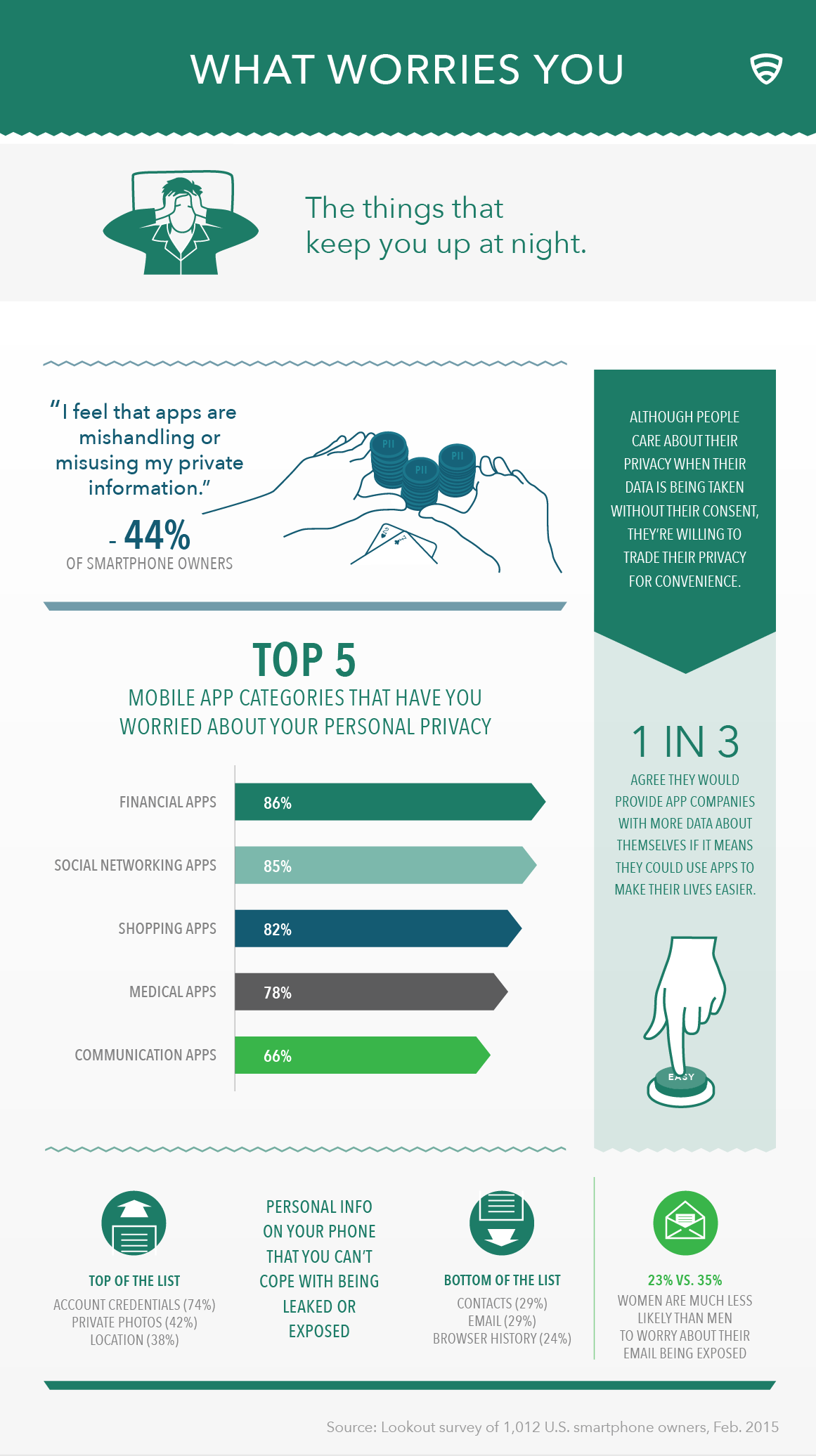
While 75 percent of respondents said they were ultimately responsible for their personal data, 5 percent claimed it was down to the US government. 10 percent said the mobile phone network, and 11 percent the company they were sharing data with.
The bad news for employers is nearly 60 percent of users care less about protecting work data on their phones than protecting their own personal information. Just 5 percent said they would take the most steps to protect work info, as opposed to 76 percent who would prioritize their own personal content. Think your friends have your back? Nope -- just 3 percent cared about protecting friends’ data.
Lookout sums up its findings by saying:
The results of Lookout’s Mobile Privacy IQ study highlight a gap that exists between awareness of privacy issues and the actions people are taking with their mobile devices to protect their privacy. While people claim to understand how to protect their privacy, they are still unknowingly partaking in behaviors that could put themselves and their employers at risk. Furthermore, they are still willing to trade privacy for convenience. Mobile devices have become the predominant computing platform for both work and pleasure, and thus house and have access to valuable personal and corporate data, making them rich targets for cybercriminals. As we lay the foundation for a connected world, the need to protect privacy, across all devices, will only continue to become increasingly important.
Lookout also provides the following tips to stay safe on your smartphone:
- Set a pin or passcode. Don’t jump on the "no passcode" bandwagon like nearly 35 percent of people who say they excel in mobile privacy. Set a passcode on your phone. It’s your first line of defense against prying eyes and thieves.
- On public Wi-Fi, limit email, social networking and only window shop. Public Wi-Fi networks are everywhere, but security for these networks is scarce, making it relatively simple for hackers to snoop on your Internet activity. Take a note from the 25 percent of smartphone owners who never connect to open Wi-Fi.
- The final "s" is key. 1 in 5 smartphone users never bother to check whether a URL leads with "https" before visiting a website on mobile. When browsing the web on mobile, take the extra step once the page has fully loaded to make sure the URL you’re visiting leads with "https". This ensures that your connection is secure.
- Clear your browsing history regularly. We found that 17 percent of people have never cleared their browsing and search history on their smartphone. Go above and beyond to protect your privacy if an unauthorized third-party ever gets hold of your device.
- Use discretion when downloading apps and pay attention to the apps ratings and reviews. Ultimately, don’t be afraid to just say 'no'. If you’re uncomfortable with the info an app is accessing, don’t hesitate to stop installation or delete it. In fact, 56 percent of smartphone owners have decided against installing an app after reading the privacy or permissions statement.
- If you’re not comfortable with broadcasting your location, turn Location Services off. Both Android and iOS phones have functionality that allows your location be broadcast to a number of services.
- And last but not least, download a mobile security app, like Lookout, that checks for malware and spyware, fights against phone loss and theft, and notifies you of the information apps on your phone are accessing.
Image Credit: Rudie Strummer / Shutterstock
-

How to download an ISO image of Windows 10 Build 10041
Publié: mars 21, 2015, 9:31pm CET par Wayne Williams

Although Microsoft released a new build of the Windows 10 Technical Preview earlier in the week, it only made it available to Windows Insiders on the Fast ring, and through Windows Update. It’s not officially available as an ISO image yet (Microsoft currently only offers downloads for Build 9926).
However, it is possible to grab an ISO of the new build through unofficial channels.
This ISO was created using Windows Update files from Build 9926 (the setup files are genuine and it’s perfectly safe) and it’s hosted on Mega.
I’ve installed the ISO in VirtualBox (instructions are the same as here), and can confirm it’s exactly the same as if you updated Windows 10 Build 9926 through Windows Update.
You can download the 32-bit ISO from here, and the 64-bit version from here.
Image Credit: ValentinT/Shutterstock
-

Epson: Unlocking the potential of augmented reality today [Q&A]
Publié: mars 20, 2015, 2:19pm CET par Wayne Williams
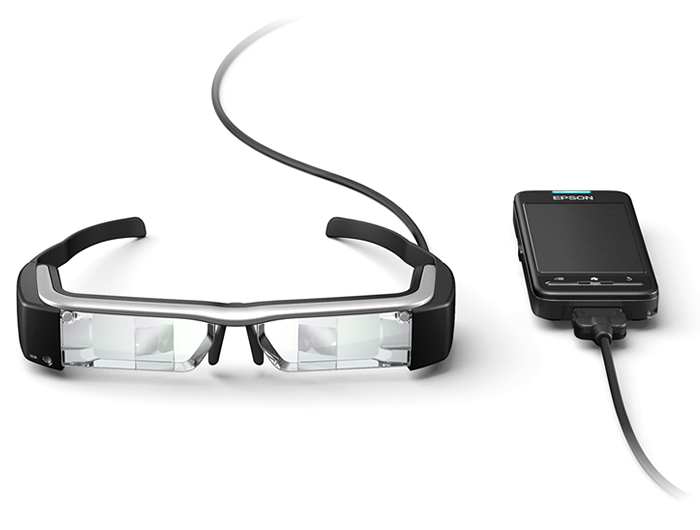
Microsoft’s HoloLens, and the Google-backed Magic Leap might be touted as the future of augmented reality wearables, but electronics giant Epson has beaten both firms to the punch. Its own AR smart glasses are already on the market and finding an appreciative audience among gamers, movie watchers, businesses, and even the registered blind.
I spoke with Valerie Riffaud-Cangelosi. Epson’s New Market Development Manager, about the Japanese firm’s venture into augmented reality, and its plans for the future.
BN: What is the Moverio BT-200?
V R-C: The Moverio BT-200 is Epson’s second generation binocular, see-through smart glasses with AR capabilities. Key features include a front-facing camera and motion trackers, a "floating" 80-inch perceived screen, Wi-Fi and Bluetooth connectivity and an interactive track pad.
BN: Who is it aimed at?
V R-C: The Moverio BT-200 is both aimed at consumers and business users within multiple sectors.
Our smart glasses are great for entertainment purposes -- allowing the user to experience truly immersive, big screen gaming and cinematic viewing -- but within western Europe, we see their real potential lying in the business arena, leveraging their practical applications to enhance diagnostics, customer service and training.
BN: What is it being used for?
V R-C: Smart glasses have already established growing interest in the consumer market, but we believe that the real opportunity for wearable technology lies within the commercial and services markets, deployed to improve service provision and workplace efficiency through Augmented Reality. Our AR applications are used to increase productivity and efficiency for businesses in many different market sectors, from retail and tourism to education, healthcare, architecture, aviation, logistics and beyond.
For example, airline EasyJet is currently field testing Epson’s Moverio glasses to enable engineering teams to see exactly what a pilot or engineer is seeing remotely using AR technology, with the ultimate aim of minimizing passenger delays and improving its industry leading safety records. Currently, engineers and pilots have to email pictures and call EasyJet’s Operations Control Center (OCC) to try and resolve issues manually. With Moverio, EasyJet’s OCC can provide live information to the engineers and pilots in real time, along with technical assistance through the integrated hands-free head set.
Other companies are recognizing the opportunity of AR as a means of improving the customer experience, and speeding up the sales and decision process. Global flooring solutions company Tarkett, for example, has been using our smart glasses as a way of providing its customers with an immersive visualization tool for viewing different floor covering options by overlaying the image of the different products into 3D and real world views of rooms.
The process removes the need for customers -- mainly architects, designers and building owners -- to 'imagine' what a room would look like from viewing product samples or 2D computer renders. Instead the solution delivers an instant, immersive view and atmospheric representation, ultimately helping to ease the decision making process.
BN: Are they suitable for spectacle wearers?
V R-C: Absolutely, the Moverio BT-200 has a prescription lens insert, which allows users to mount their own lenses.
BN: What partners do you have working on applications, and what sort of products are they creating?
V R-C: Epson has established partnerships with numerous end user companies, ISVs and developers in order to create solutions and applications for use in fields from healthcare and dentistry to aviation and logistics.
To give you an example, Mekorot, a leading Israeli water distribution company has been using our Moverio products for remote field diagnostics and maintenance of their equipment. Working closely with Fieldbit, the ISV who developed the application for the project, our smart glasses are helping Mekorot to improve its business efficiency and productivity since its employees no longer need extensive training and can work on the equipment without having to handle papers or memorize a range of details.
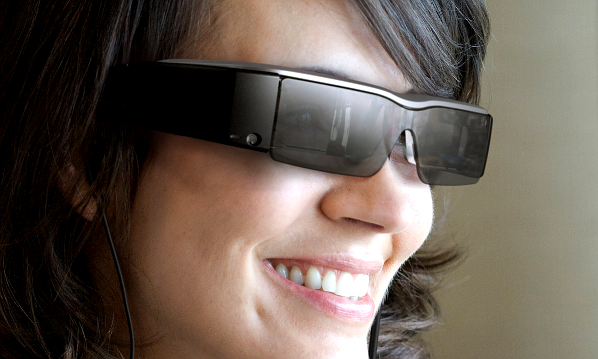
BN: How does this compare to Microsoft HoloLens?
V R-C: There are numerous concept products and prototypes in circulation at the moment, and it would not be right for us to make comparisons or offer comment on them. Our product is one of only a few to have made it into mass production. This is due to the complexities of manufacturing the components needed within smart glasses -- particularly the optics. We have been able to achieve this because the technologies used within our product are all our own and have been used in other formats for many years. We also control our own production and are therefore able to adapt and respond as needed.
BN: Do you think we'll see more companies producing similar products, and how will Epson stay at the forefront?
V R-C: With businesses feeling the pressure to stay competitive, the AR market is set to explode. We have no doubt that other companies will want to capitalize on the growing demand for AR devices.
Our advantage is that all of our products and components are based on our core technologies and are manufactured in-house by Epson. Our heritage lies in sensing -- a key element within smart glasses -- as well as our 3LCD technology used in projection, which has been miniaturized for use in our smart glasses.
We never imitate others but create new technology solutions and products from the ground up. We have been listed as a top 100 innovator for the past three years by Thompson Reuters and we invest $1.3 million every day into R&D, resulting in around 5,000 patents being registered each year.
BN: How will smart glasses with augmented reality benefit our lives in the future?
V R-C: In the future, we can expect augmented reality to impact and improve many aspects of our lives, from healthcare through to education and industry.
One key example of how these products are already making a real impact on the lives of individuals and improving quality of life is the project underway with Oxford University. The team there are using the Moverio platform to develop a system to improve the vision of people who are registered blind. This project is a joint effort being progressed by multiple research departments within the university with a specific focus on mitigating some of the main challenges faced by partially sighted people. This includes helping to improve peoples’ ability to recognize faces and facial expressions -- a challenge that for many means that they struggle with some of the basic social cues and principles of social interaction. The system, which is now in field trials, is expected to be capable of significantly improving the vision of around half of those registered blind.
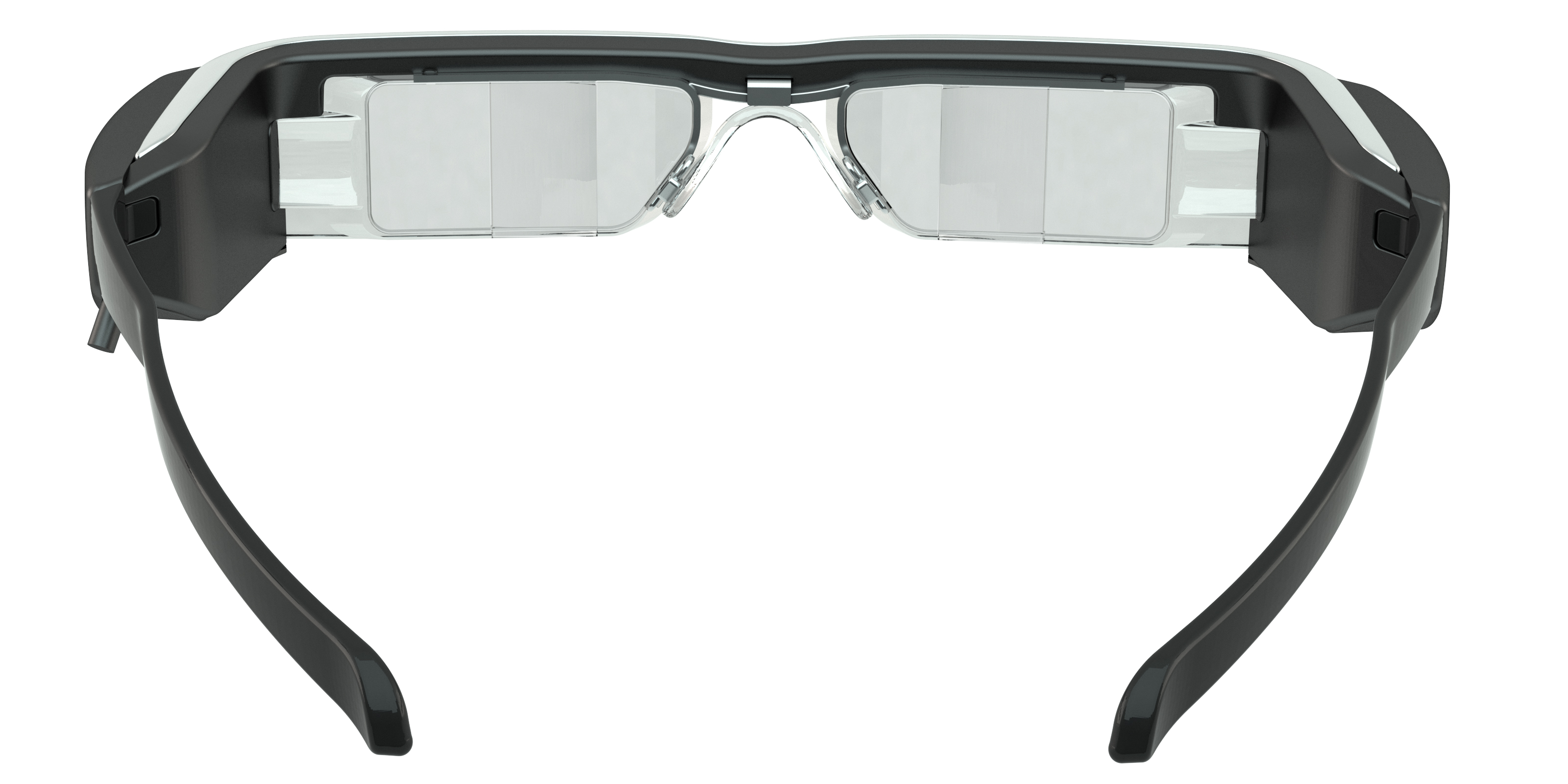
BN: What new trends in wearables are you seeing?
V R-C: There is currently a growing acceptance of wearable technology products as well as a desire to use technology to improve lifestyles, business and health.
With the emergence of trends such as Big Data and the Internet of Things, AR devices are further enabling sophisticated business application development, supported by more and more devices becoming connected and enhanced through sensing technologies. These sensing capabilities ultimately mean that AR devices will increasingly enable the input of, access to and output of vast amounts of data that can be provided in meaningful formats, successfully blending the analogue and digital worlds.
BN: Is Epson planning on developing more wearables in the future?
V R-C: Yes, wearable technologies are a key focus for Epson and draw from a number of our core strengths and technologies. At present, this business area is in its infancy for us, but we anticipate a material impact on profit to be generated within three years. By this point, we expect wearable products to represent a 10 billion yen business for us and within five years, this will have doubled to 20 billion yen.
Leveraging cloud and mobile technologies and their ability to give people access to data anywhere and at any time, our ultimate goal for the wearables sector is to produce products and platforms that can help improve quality of life.
-

Windows 10 won't be the operating system I was hoping for
Publié: mars 19, 2015, 3:13pm CET par Wayne Williams
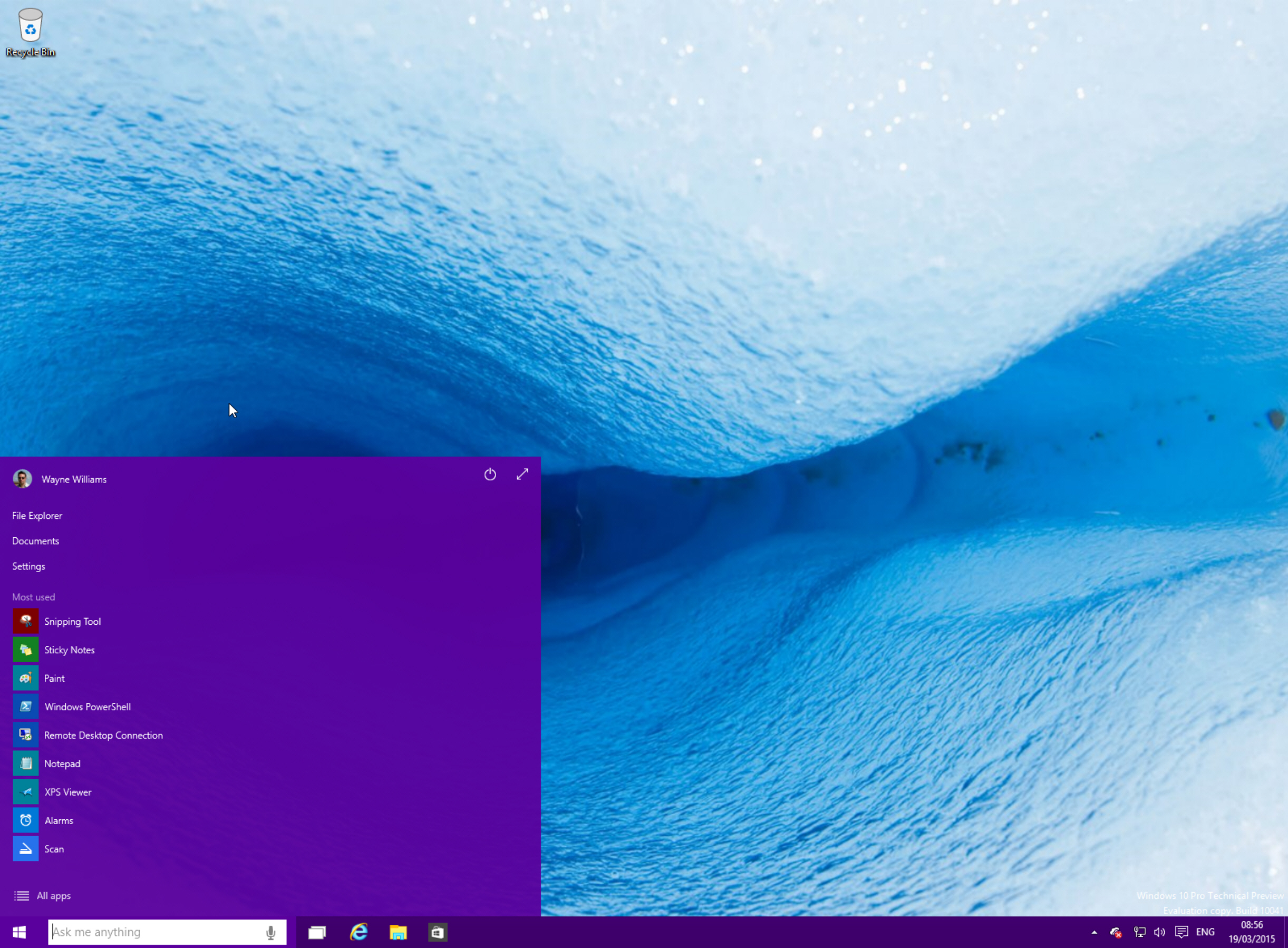
It could be argued that with Windows 10 still a work in progress it’s too early to express disappointment and dissatisfaction with Microsoft’s forthcoming operating system. But with a summer launch announced, the truth is we’re probably not likely to see too many major changes in the coming months. What’s on show in Build 10041 is probably quite close to what we’ll get in the finished thing, albeit with some spit and polish.
When Microsoft announced it would be listening to users and implementing changes based on feedback, I was excited. Sure, a camel is a horse created by a committee, too many cooks spoil the broth and all that, but at least it meant that the sort of blatant usability problems Microsoft managed to somehow miss in Windows 8 wouldn’t occur in Windows 10. However, as time has ticked past I've started to doubt that Microsoft is listening as closely to Windows Insiders as it claims to be.
Remember when then-Windows division CFO Tami Reller said of the demand for a Start button, "We've really tried to understand what people are really asking for when they're asking for that", and the end result was the introduction of a Start button in Windows 8.1 that was not -- in the slightest -- like anything anyone had asked for? Windows 10 seems a bit like that.
In Build 9841 we actually had a decent Start menu. I liked it. I found it to be the perfect blend of old (Start menu) and new (Start screen). We still have that menu, right? Well yes and no. With the original version, the tiled area on the right expanded or contracted as you added or removed tiles. So if you like apps, it would spread right across the desktop. If you hate tiles, just unpinning them all would give you a standard old school Start menu. Not now. Unpin every app and you end up with a giant blank space on the right. The original Start menu could be resized by clicking and dragging on the top edge. Now you have the choice between large and full screen, and that’s it.
I can’t imagine Windows testers shouted for that change. That’s pure Microsoft just not wanting to let go of the Start screen concept.
It’s possible in a future build Microsoft might add more customization options to the Start menu. I hope it does, but I suspect it won’t.
And changing the subject, but what the hell are those icons all about? Did a child wander in and draw them for Microsoft? It certainly looks that way. Now it appears this is an area where Microsoft is listening as a choice of different icons are being shown to panelists in the Feedback Lab, so there’s every chance the current ones won’t make the cut. Unless the panelists say they prefer the horrible icons... but provided they have eyes there's little chance of that.
The whole new Settings menus just feel a bit simplistic to me, but I guess I’ll get used to them, and I’m not a fan of some of the design choices, but there’s still time for those to be changed. Or again, I’ll get used to them.
Now don’t get me wrong -- I don’t hate Windows 10, far from it. I think it’s a good operating system, and while I doubt I’ll be using Cortana on a desktop PC, and virtual desktops are similarly of little use to me on my three monitor set up, I appreciate their inclusion. I just would have liked to have seen more advanced customization options and some more ground breaking features. Microsoft skipped a whole version number to distance Windows 10 from its predecessor, but the changes I’m seeing -- on the surface at least -- don’t really justify that. Yes, the whole scaling architecture and universal apps approach means Windows 10 has life away from the PC, which is good -- for Microsoft -- and unlike in Windows 8, the tech giant hasn’t thrown its existing user base under the bus in a rush to get to the "future". But if the upgrade price wasn’t free, free, free, I’m not convinced Windows 10 would be enticing enough to make Windows 7 users switch in great numbers, which is what Microsoft desperately needs them to do.
-

Seagate Personal Cloud: Home media storage done right [Review]
Publié: mars 19, 2015, 1:56pm CET par Wayne Williams
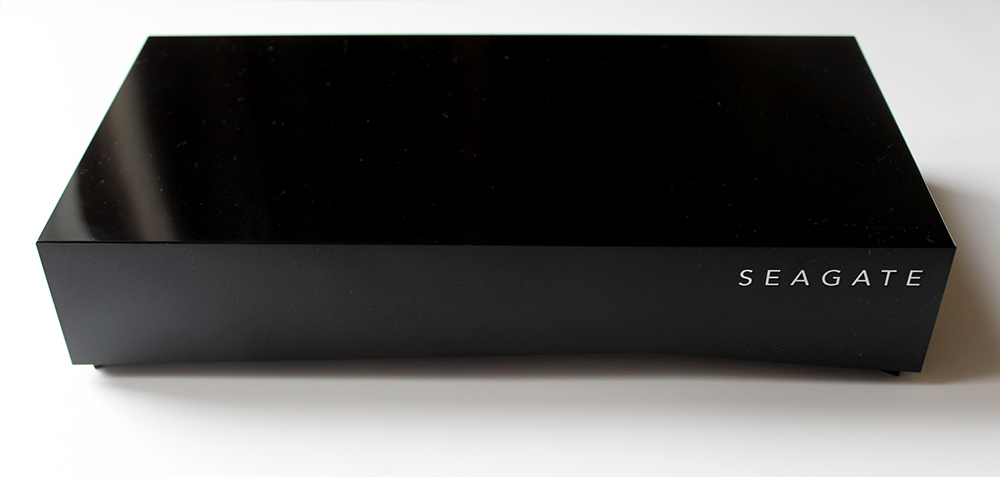
The average family has multiple devices capable of taking photos and videos. Seagate Personal Cloud from Ebuyer provides a central repository for all of this media, and can automatically back up content from your computers, smartphones and tablets.
You can access movies, music, photos and files from any supported device on your network, and stream media directly to Chromecast, Roku, Apple TV, and some Smart TVs. You can also access your files remotely over the internet, and sync content with cloud storage services.
Seagate Personal Cloud is a stylish black slab with "Seagate" picked out in silver on the right hand side. The dimensions are 119 x 235.15 x 48mm (L, W, H). The model I tested had 3TB of storage, but it’s also available in 4TB, 5TB, 6TB and 8TB capacities, which should be more than enough for most people’s needs. Like the Seagate Wireless I reviewed previously, the only paperwork you get in the box is a folded quick start guide. There is a PDF manual you can download if you require additional documentation though.
There are two USB ports for backing up an externally attached drive -- a USB 2.0 port on the back, and a USB 3.0 port on the right-hand side.
All you need to do to get started is connect the storage device to your router using the supplied Ethernet cable, and then attach the power. The device will configure itself, which takes around 8 to 10 minutes, after which time the blinking light on the front of the box will stabilize and the device will be ready to use.
Access Personal Cloud through Windows Explorer or Mac Finder, go into the Public folder and you’ll find subfolders for music, photos and videos. There’s also an internet shortcut. Open this to launch the Seagate Personal Cloud Setup Wizard.
Agree to the terms and conditions, and it will check for a firmware update and download and install anything it finds. A firmware update takes quite some time to complete and the device will restart twice.
When it’s done, restart the wizard and enter your details, including email address, password and time zone. You can optionally register your product with Seagate. You’ll receive a confirmation code that you need to complete setup.
The web interface displays a selection of icons -- Device Manager, Download Manager, Backup Manager, App Manager, Sdrive and Seagate Media.
Device Manager provides an overview, showing disk space usage, the number of users connected and the health of the device. You can add family and friends to your personal cloud. These can be local users (on the same network) or a remote user. You can also access the Settings here.
Download Manager is used to download large torrent, PDF, or binary files from your computer or the Internet.
Backup Manager lets you backup files on your computers and mobile devices. You’ll need to download and install the free Seagate Dashboard on to your PC or Mac and the Seagate Backup app on your Android or iOS devices.
App Manager shows the apps you have installed, and lets you install additional ones, such as BitTorrent Sync and WordPress.
Sdrive offers secure access to documents, photos, videos and music stored on Personal Cloud. All data is encrypted before it leaves the device, and only the Sdrive app can decrypt the files.
Finally, Seagate Media is an app for iOS, Android (Google Play and Amazon Appstore) and Windows Phone that is used to view media and also stream it to connected devices, like Chromecast and Roku. I like the app (the same one is used for the Seagate Wireless storage device), but it can’t handle every type of media file you might choose to store on Personal Cloud. If a file is unrecognized you’ll be prompted to choose a different app to display or play the file.
I had been using Western Digital’s My Cloud for storing and accessing media previously, but I much prefer Seagate Personal Cloud. If you have a lot of photos and videos that you want easy access to from anywhere, then it’s a superb solution.
The 3TB version of Seagate Personal Cloud costs £143.49 from Ebuyer with free delivery. Other capacities are also available.
-

30 years of dotcom -- what became of the first 100 domains?
Publié: mars 17, 2015, 2:23pm CET par Wayne Williams

Sunday marked the 30th anniversary of the first ever 'dotcom' domain being registered. Symbolics.com (originally a homepage for computer programmers) was the first ever dotcom, followed a month later by Bbn.com (an American high-technology company) and then another month later by Think.com (a supercomputer manufacturer).
There aren’t many big tech names in the top ten (with the exception of Xerox and HP at 7 and 9 respectively) and despite its reputation as being an innovator, Apple didn’t register a domain until February 1997, making it the 64th oldest dotcom. There are now approximately 275,000,000 dotcom domains in existence.
To celebrate the anniversary, MyVoucherCodes.co.uk has looked back over the first 100 registered domains to see where they are now and produced an infographic covering its findings.
Tech and computing companies make up 65 percent of the first 100 dot com domains ever registered. Firms in the manufacturing industry account for 15 percent of the first 100, ahead of the IT sector with 8 percent.
But where are they now? 52 percent of the first 100 domains are still active and serve the same companies. 24 percent, including think.com, are just dead links. The final 24 percent are still active but redirect elsewhere.
This is the top ten in focus:
NUMBER: 1
URL: Symbolics.com
DATE: 15th March 1985
DESCRIPTION WHEN FIRST REGISTERED: The now defunct Symbolics Inc was one of the first computer program writers and created several systems that remain in use today. Managerial issues brought the company to its knees in mid-80s and the domain was eventually sold.
DESCRIPTION NOW: Belongs to a small group of investors from Dallas, Texas who have great enthusiasm for domains. The website now serves as resource for interesting facts about the history of the Internet.
LINK ACTIVE: Link is active, but doesn't serve the same purpose it did when created.
NUMBER: 2
URL: Bbn.com
DATE: 24th April 1985
DESCRIPTION WHEN FIRST REGISTERED: BBN Technologies is an American high-technology company which provides research and development services. It is a military contractor, primarily for DARPA, and also known for its 1978 acoustical analysis for the House Select Committee on the assassination of John F. Kennedy.
DESCRIPTION NOW: BBN became a wholly owned subsidiary of Raytheon in 2009.
LINK ACTIVE: Link is active, but directs to Raytheon's website.
NUMBER: 3
URL: Think.com
DATE: 24th May 1985
DESCRIPTION WHEN FIRST REGISTERED: Thinking Machines Corporation was a supercomputer manufacturer founded in Waltham, Massachusetts, in 1983 by W. Daniel "Danny" Hillis and Sheryl Handler to turn Hillis's doctoral work at MIT on massively parallel computing architectures into a commercial product known as the Connection Machine.
DESCRIPTION NOW: The company filed for bankruptcy in 1994; its hardware and parallel computing software divisions were eventually acquired by Sun Microsystems.
LINK ACTIVE: Link is not active.
NUMBER: 4
URL: Mcc.com
DATE: 11th July 1985
DESCRIPTION WHEN FIRST REGISTERED: Microelectronics and Computer Technology Corporation (Microelectronics and Computer Consortium - MCC) was the first, and -- at one time -- one of the largest, computer industry research and development consortia in the United States. In June, 2000 the MCC Board of Directors voted to dissolve the consortium, and the few remaining employees held a wake at Scholz's Beer Garden in Austin on October 25. Formal dissolution papers were reportedly not filed until 2004.
DESCRIPTION NOW: N/A
LINK ACTIVE: Active, but automatically takes you to a website with an unidentifiable purpose.
NUMBER: 5
URL: Dec.com
DATE: 30th September 1985
DESCRIPTION WHEN FIRST REGISTERED: Digital Equipment Corporation, also known as DEC and using the trademark Digital, was a major American company in the computer industry from the 1960s to the 1990s. It was a leading vendor of computer systems, including computers, software, and peripherals, and its PDP and successor VAX products were the most successful of all minicomputers in terms of sales.
DESCRIPTION NOW: The domain is owned by Paul Kocher, who is a cryptography scientist.
LINK ACTIVE: Active, but automatically takes you to a new domain name..
NUMBER: 6
URL: Northrop.com
DATE: 7th November 1985
DESCRIPTION WHEN FIRST REGISTERED: Northrop Corporation was a leading United States aircraft manufacturer from its formation in 1939 until its merger with Grumman to form Northrop Grumman in 1994. The company is known for its development of the flying wing design, most successfully the B-2 Spirit stealth bomber.
DESCRIPTION NOW: N/A
LINK ACTIVE: Link is not active.
NUMBER: 7
URL: Xerox.com
DATE: 9th January 1986
DESCRIPTION WHEN FIRST REGISTERED: Xerox Corporation is an American multinational document management corporation that produces and sells a range of color and black-and-white printers, multifunction systems, photocopiers, digital production printing presses, and related consulting services and supplies.
DESCRIPTION NOW: Remains the same.
LINK ACTIVE: Link is active.
NUMBER: 8
URL: Sri.com
DATE: 17th January 1986
DESCRIPTION WHEN FIRST REGISTERED: SRI International, founded as Stanford Research Institute, is an American nonprofit research institute headquartered in Menlo Park, California.
DESCRIPTION NOW: Remains the same.
LINK ACTIVE: Link is active.
NUMBER: 9
URL: HP.com
DATE: 3rd March 1986
DESCRIPTION WHEN FIRST REGISTERED: Hewlett-Packard Company or HP is an American multinational information technology corporation headquartered in Palo Alto, California, United States. It provides hardware, software and services to consumers, small- and medium-sized businesses (SMBs) and large enterprises, including customers in the government, health and education sectors.
DESCRIPTION NOW: Remains the same.
LINK ACTIVE: Link is active.
NUMBER: 10
URL: Bellcore.com
DATE: 5th March 1986
DESCRIPTION WHEN FIRST REGISTERED: The company was created on October 20, 1983, as Central Services Organization, Inc. as part of the 1982 Modification of Final Judgment that broke up the Bell System. It later received the name Bell Communications Research, Inc. Bellcore was a consortium established by the Regional Bell Operating Companies upon their separation from AT&T.
DESCRIPTION NOW: N/A
LINK ACTIVE: Link is not active.
You can view the full infographic below.

Photo Credit: Dragance137/Shutterstock
-

Anonymous accuses Facebook of siding with Islamic State
Publié: mars 16, 2015, 1:12pm CET par Wayne Williams
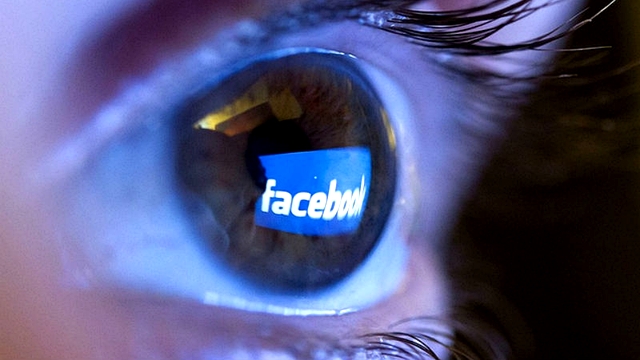
Facebook has just updated -- or rather clarified -- its Community Standards document, which outlines the type of content that are not allowed on the social network. Among the list of banned topics is, as you might expect, terrorism.
Anonymous has been battling terrorism online for a while now, taking down Islamic State related sites and Twitter accounts via its #OpISIS campaign. The aim of this operation is to prevent the terrorist organization from spreading its message online, but now Facebook has taken steps to prevent Anonymous from spreading its own message on the social network.
To encourage hackers to join in the fight against Islamic State, and also report on its progress, the hacktivist network created a Facebook page -- Facebook.com/groups/CyberBrain -- which managed to accrue over 30,000 followers.
But then, as Anonymous reports in a new video, Facebook suddenly took down the page without warning, and without giving the creators a reason. The page didn’t even violate Facebook's policies, according to the collective.
"We asked Facebook to give us a reason why they deleted our group -- is it because we're promoting the online war against ISIS, or [because] some government asked them to do so? We thought Facebook is all about freedom of speech, but we were wrong. Facebook has proven to take sides with ISIS, directly or indirectly. Governments and Facebook you should be ashamed of yourself for trying to stop us and what we're doing", the video states.
We've reached out to Facebook to ask why the page was removed and will update this story once we hear back.
-

Celebrity chef Jamie Oliver still serving up malware
Publié: mars 13, 2015, 5:13pm CET par Wayne Williams

Three weeks ago we reported on how celebrity chef Jamie Oliver’s website was serving up malware. The site, www.jamieoliver.com, has around 10 million visitors a month, so the fact it had been hacked to redirect people to an exploit kit was a big deal.
Naturally, Jamie Oliver’s management team acted swiftly to fix things, except according to Malwarebytes, which discovered the original problem, the site is now dishing up digitally signed malware.
After the original issue was reported, and supposedly dealt with, Oliver’s management team put out a public statement:
The team at jamieoliver.com found a low-level malware problem and dealt with it quickly. The site is now safe to use. We have had only a handful of comments from users over the last couple of days, and no-one has reported any serious issues. We apologize to anyone who was at all worried after going on the site. The Jamie Oliver website is regularly checked for vulnerabilities by both our in-house team and an independent third-party and they quickly deal with anything that is found. The team is confident that no data has been compromised in this incident but if anyone is worried, do please use the contact form on the site.
While it’s fine, understandable even, for the site to play down the issues, not fully dealing with the problem, which is what Malwarebytes suspects has happened here, is inexcusable.
"It is indeed quite common for a hacked server to retain malicious shells or backdoors that keep on reinfecting the site", Malwarebytes senior security researcher Jérôme Segura explains, adding that there’s every reason to believe that it is "the same infection that was not completely removed or perhaps that a vulnerability with the server software or Content Management System (CMS) still exists".
Vulnerable systems are infected with a Trojan that Malwarebytes Anti-Malware detects as Trojan.Dorkbot.ED.
Image Credit: Mr Pics / Shutterstock
-

Microsoft's personal assistant Cortana headed to iOS and Android
Publié: mars 13, 2015, 1:13pm CET par Wayne Williams

Microsoft regularly pits its personal assistant Cortana against Apple’s Siri in a series of adverts, with predictable results. Cortana is always much smarter, funnier and more helpful. She’s certainly one of the high points of Windows Phone, and is set to make her debut on the desktop when she arrives as part of Windows 10 later this year.
However, it seems Cortana isn’t just going to be confined to working on Windows devices. According to Reuters, Microsoft is also working on bringing the personal assistant to iOS and Android in the form of a standalone app.
"This kind of technology, which can read and understand email, will play a central role in the next roll out of Cortana, which we are working on now for the fall time frame", Eric Horvitz, managing director of Microsoft Research and a part of the artificial intelligence Einstein project said in an interview.
Although he didn’t confirm plans to make Cortana more widely available (Reuters cites "people familiar with the project") it would certainly be an interesting move, and consistent with Microsoft pushing its software and services on rival platforms, often ahead of its own.
But is making Cortana available on other platforms going to significantly weaken Windows Phone’s appeal? She’s certainly one of the major selling points at the moment.
What do you think of the news?
-

'Anonymous' targets Kanye West
Publié: mars 13, 2015, 9:59am CET par Wayne Williams
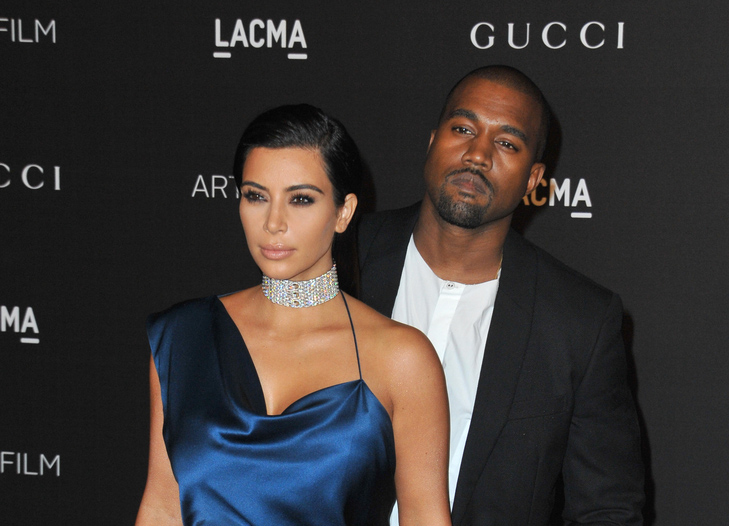
Anonymous is a very loose collective of hackers. In the video setting the record straight on #OpISIS, it is described as a family that is as "divided and fractional as any more traditional, not so Anonymous family in any city, town, or isolated rural village in the world".
Almost anyone can claim to be in Anonymous, and launch their own attacks or operations, and proving the point, someone claiming to be from the hacktivist collective has released a video targeting Kanye West and his wife Kim Kardashian.
Whether it’s actually Anonymous behind the video is a matter for debate -- although the person who uploaded it has also posted numerous other Anonymous videos, including messages to the Madison Police Department and Israel -- but the new "Message to Kanye West" certainly takes no prisoners.
It describes the rapper as a "spoiled child in a grown man’s body" and criticizes him for not knowing "when it is appropriate to blurt out your opinions", and for always having to "steal the moment from others who work equally as hard for their recognition". "You assume and even expect everyone else to be aligned with your personal opinions," the video states.
The message also lays into Kim Kardashian, focusing on her recent "Break the Internet" nude photos in Paper magazine.
Perhaps disappointingly the video isn’t threating to take Kanye West and his family off the internet, as you might expect from Anonymous, but is rather just a message to the rapper.
The video ends stating, "Anonymous is sounding off the 'New Renaissance' era this year for humanity and if you don't shape up then your legacy will not be included. Poor examples such as yourself will not be tolerated anymore in the new age".
What other "poor examples" of humanity should Anonymous be targeting?
Photo credit: Jaguar PS / Shutterstock
-

Anonymous sets the record straight regarding its battle with ISIS
Publié: mars 12, 2015, 9:07pm CET par Wayne Williams

Hacktivist network Anonymous has been taking down ISIS related sites and Twitter accounts in a bid to prevent the terrorist organization from spreading its message online. Anonymous has declared ISIS a virus, and itself the cure.
However, cyber blog Krypt31a has described Anonymous's recent actions as Whack-a-mole without a plan, spurring a representative of the hacktivist group to issue a video reply setting the record straight.
Anonymous states that #OpISIS isn’t in fact a continuation of the earlier #OpCharlieHebdo, as some have said, but has its roots in something entirely different and with a different motivation.
Although partway through the video things go off on a tangent and there’s rambling talk of Chinese proverbs and traditions, eventually the purpose of #OpISIS is revealed:
It is perhaps for this reason, and this reason alone, that it is important to set the record straight as to what exactly it was that sparked off #OpISIS, so that those who think, or claim that they are in the know -- when in fact they know nothing -- can perhaps be enlightened with regard to what makes Anonymous -- and certain moral factions in particular -- think.
As an Anonymous insider and a long-serving member of the small but capable strike team that hit a series of ISIS websites in the immediate aftermath of #OpCharlieHebdo as January 2015 began to draw to a close (an event that was initially reported only by the far from mainstream Counter Current news website), I am in a position to reveal that, like so much that Anonymous is involved with, one of the primary motivations behind the attack was to expose government lies about what the Cyber Caliphate had been getting up to, the fact that the US military in particular had been lying to its own people about what ISIS had been doing, in addition to keeping them misinformed about the extent of the Cyber Caliphate’s online capabilities, was one of many factors that was to determine the first stage initiation of #OpISIS by the Anonymous RedCult strike team.
Of the many other motivations subsequently broadcast across cyberspace through the creation and proliferation of the RedCult’s own unique series of videos, another primary motivation reminiscent of #OpChanology, the now legendary online campaign by Anonymous against the Church of Scientology, was -- and is -- the fact that Anonymous sees the internet as its own principle domain and that anything that infringes on the domain in an oppressive way is a fair and legitimate target for Anonymous.
In other words, Anonymous owns the internet, and if it doesn't agree with your actions, it will come for you.
Photo credit: Vincent Diamante
-

No sex please, I'm checking my emails (and then updating Facebook)
Publié: mars 12, 2015, 5:41pm CET par Wayne Williams

According to a new survey from Durex and Durham University’s Center for Sex, Gender and Sexualities, a large portion of us are more likely to be seduced by the lure of our smartphones than our partners.
40 percent of couples admitted to delaying sex because of smartphones or tablets, while others said they’d raced through the act in order to respond to messages. One third of respondents admitted to interrupting sex in order to answer the phone (because, you never know, it might be the spouse calling to find out where you are).
Earlier in the week Durex teased a smartphone technology that could improve our sex lives, and it turns out to be the off button.
Ukonwa Ojo, Head of Global Brand Equity at Durex said "With technology playing such a pivotal role in our personal lives and relationships, we asked if it could utilized in a positive way to enhance our sex lives, but in doing so we discovered the most effective answer can be the simplest. After consulting countless experts, academic research and qualitative interviews, the solution turned out to be a straightforward one -- we should disconnect to reconnect".
As part of its new #Connect campaign, Durex has released a short film which shows how several couples have become seduced by the lure of technology.
The survey that was conducted was far from comprehensive -- just 30 Brits aged 18-55 were interviewed (all of whom were heterosexual and had been in a relationship for at least a year) -- but I suspect had more couples been quizzed, the results would have been broadly similar.
Photo Credit: Shumilina Maria/Shutterstock
-

BBC Micro Bit is a free Raspberry Pi alternative for kids
Publié: mars 12, 2015, 2:22pm CET par Wayne Williams

It’s no secret that the Raspberry Pi has its roots in the microcomputers of the 1980s. And one device in particular inspired the creation of the massively popular barebones system -- the BBC Micro. Auntie Beeb’s computer was available in two models -- A, and B -- as is the Raspberry Pi.
Interestingly, while the BBC Micro inspired the Raspberry Pi, the Raspberry Pi has now inspired a new BBC Micro -- the Micro Bit.
Developed in a pioneering partnership with over 25 organizations, including ARM, element14, Microsoft, Samsung, and Cisco, the BBC will be giving one of these new mini computers free to every child in year 7 across the UK from September. That’s around 1 million devices being given away for free in a bid to encourage children to learn to program.
The Micro Bit isn’t a straight rival to the Raspberry Pi, in fact it’s rather different. According to the BBC, it will be a small wearable device with an LED display that children can program in a number of ways. It will be ready to use and code on immediately. The image above is merely the prototype and the look, and indeed maybe even the name, will change the closer to production it gets.
According to the BBC, the Micro Bit "is designed to be a starting point to get younger children interesting in coding so they can move onto other, more complex devices in future. And the Micro Bit can even connect and communicate with these other devices, including Arduino, Galileo, Kano and Raspberry Pi, as well as other Micro Bits. This helps a child’s natural learning progression and gives them even more ways of expressing their creativity".
-

HBO announces HBO Now streaming service -- exclusive to Apple at launch
Publié: mars 9, 2015, 6:39pm CET par Wayne Williams
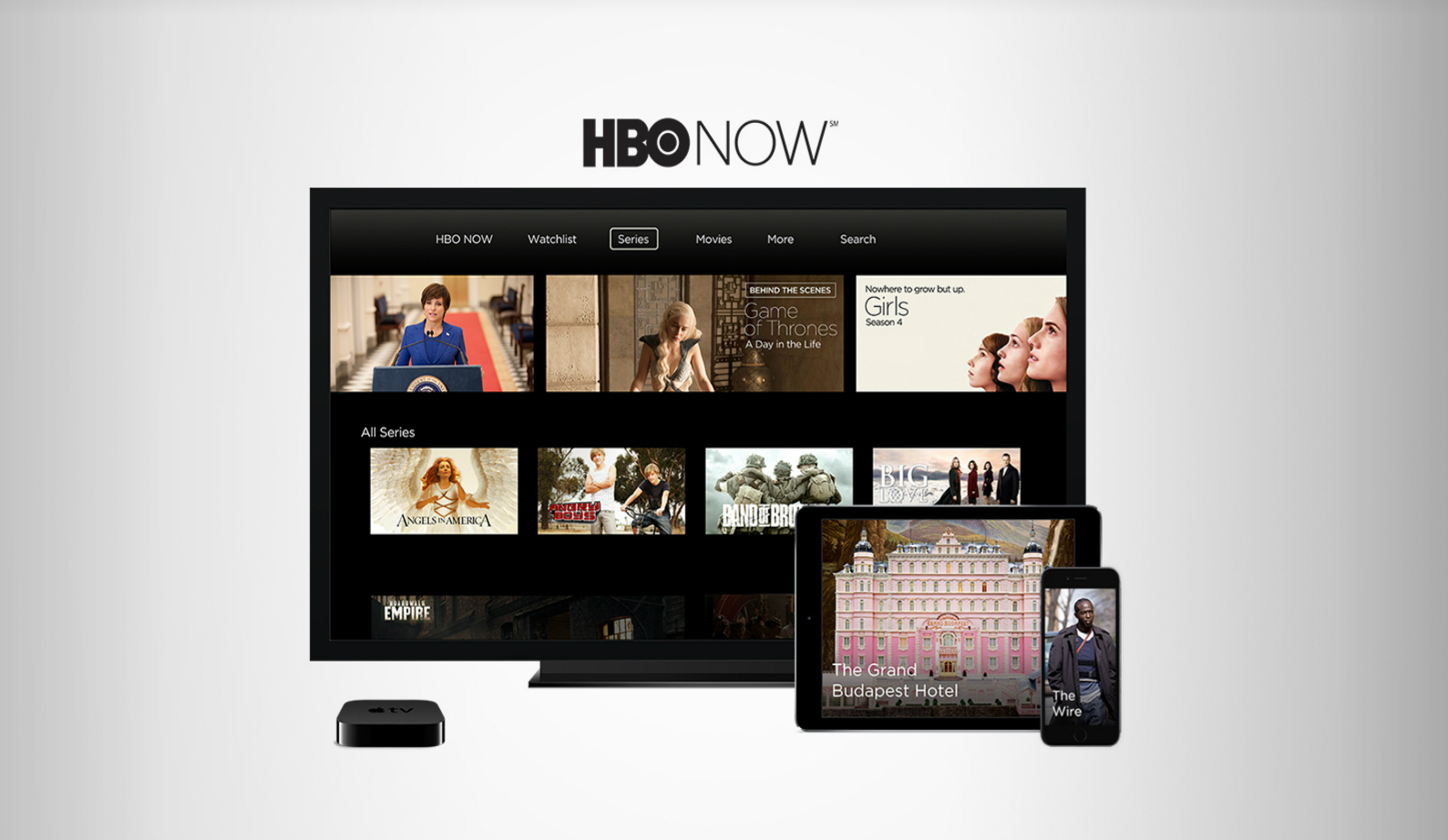
The Apple 'Spring Forward' event is currently underway, and the first big announcement is that HBO Now, the name of Home Box Office’s standalone premium streaming service, will be exclusive -- initially at least -- to Apple Customers.
Similar to HBO GO, HBO NOW will offer more than 2,000 titles online and includes every episode of every season of its programming, including of course, Game of Thrones. It costs $14.99 a month and Apple customers who sign up in April can enjoy a 30-day free trial. It will be available to watch on iPhone, iPad or iPod touch, or directly on Apple TV.
"HBO NOW is the next phase of innovation at HBO", says Richard Plepler, chairman and CEO, HBO. "With this new partnership, a natural evolution for the network, we have access to millions of Apple customers who are used to getting their favorite apps immediately. Now, they can do the same with an HBO subscription".
Eddy Cue, Apple’s senior vice president of Internet Software and Services, adds "HBO NOW offers a new generation of HBO fans many of the best TV programs in the world without a cable or satellite subscription. Now, with the same simplicity as buying an app, customers can subscribe to HBO NOW and instantly start viewing their favorite HBO programs as they air -- this is huge".
If you’ve been considering buying Apple TV, now’s the perfect time, especially as Apple has also dropped the price of its set top box to $69.
HBO NOW is US-only though sadly.
-

Watch Apple's 'Spring Forward' event live on any device including Windows and Android
Publié: mars 9, 2015, 12:18pm CET par Wayne Williams
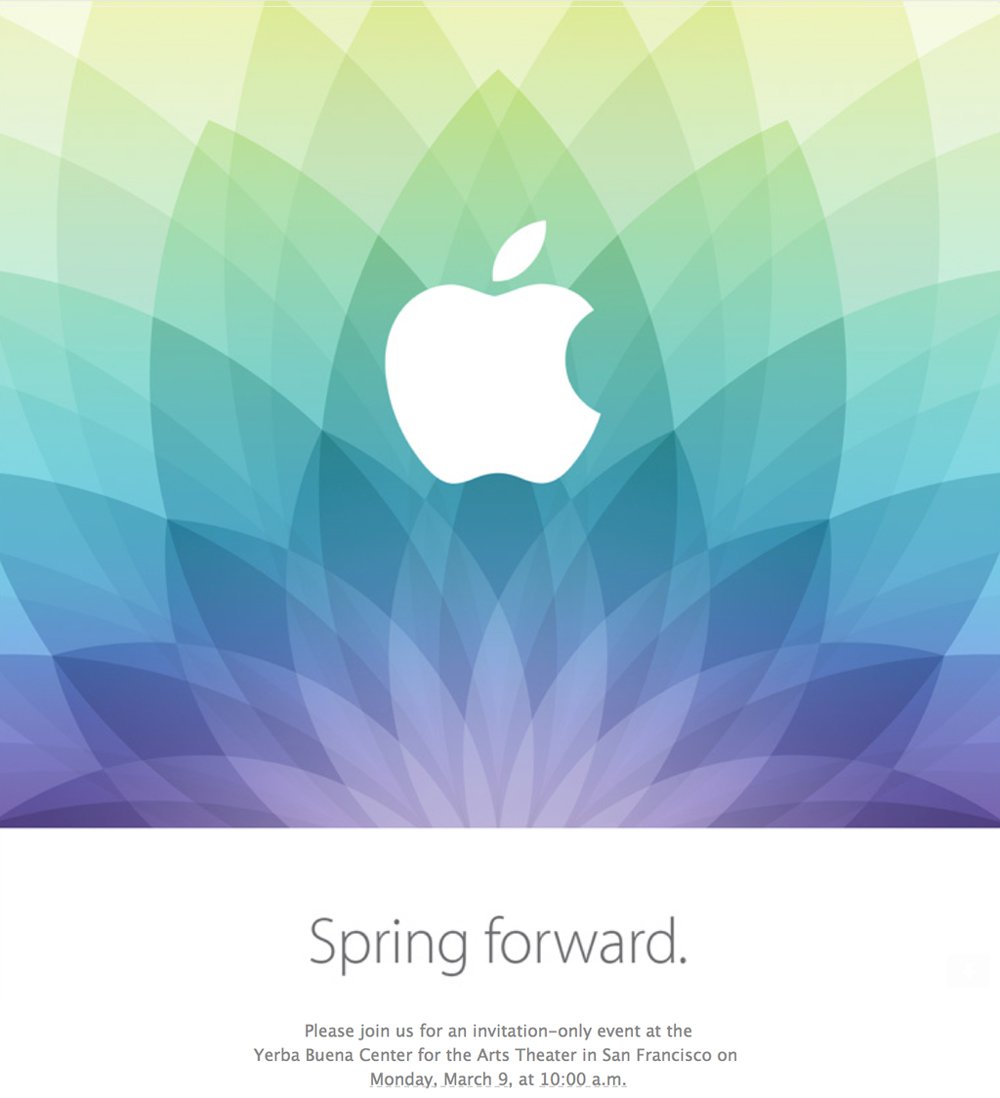
Whether you think the Apple Watch will revolutionize wearables, or be a rare misstep for Apple, we’re about to find out as the tech giant is all set to launch its latest new product at a 'Spring Forward' event which is being hosted today at the Yerba Buena Center for the Arts Theater in San Francisco.
While the Apple Watch will be the center of attention, it’s possible that Apple will have a few other products to show off too including maybe a Retina MacBook Air and Beats Music Service.
The event starts at 10am PST, which is 1pm EDT and 5pm GMT (thanks to the change in Daylight Savings Time in the US). There will be a live stream, but as always with Apple, there are some restrictions.
Apple likes to preach to the faithful, so live streaming the event requires Safari 5.1.10 or later on OS X v10.6.8 or later; Safari on iOS 6.0 or later. Streaming via Apple TV requires second- or third-generation Apple TV with software 6.2 or later. Assuming you have what's required, you can watch the event live here.
If you have a Windows PC or an Android device you can still watch the event, but you’ll need VLC Media Player installed. Assuming you do, open it, and click on "Media" at the top left. Go to "Open Network Stream" and paste in the network URL of the live Apple event which is:
http://p.events-delivery.apple.com.edgesuite.net/1503ohibasdvoihbasfdv/m3u8/atv_mvp.m3u8
Tune in once the event starts and feel free to share your comments about what Apple is showing off in the comments below. Will you be buying an Apple Watch?
-

ASUS RP-AC52 Dual-Band Wireless Range Extender: An affordable solution to patchy Wi-Fi [Review]
Publié: mars 5, 2015, 3:56pm CET par Wayne Williams
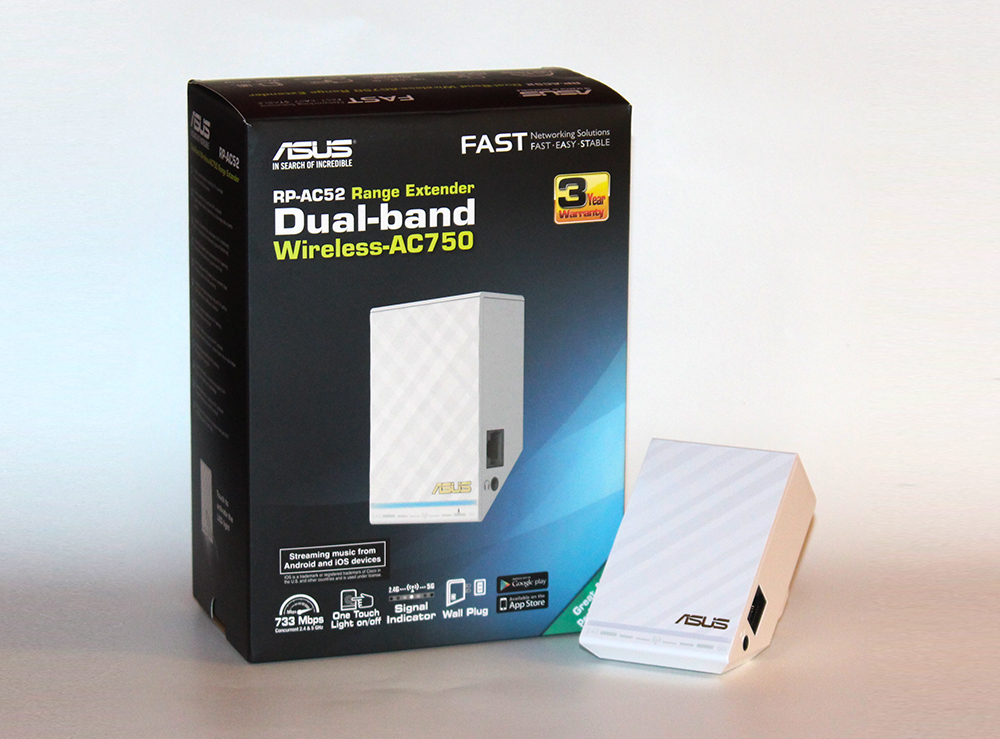
My home broadband connection is a speedy (up to) 152Mbps, and when I’m downloading on a PC connected to the router, I get impressive speeds. But because the router is in the basement (where my home office is), accessing the internet in other rooms via Wi-Fi is often flaky and unreliable. At times I can’t connect at all.
I’ve boosted the connection with multiple TP-Link 300Mbps Universal Wi-Fi Range Extenders and while that’s helped, the truth is the end result is still far from great. ASUS’s RP-AC52, an 802.11ac concurrent dual-band wireless range extender, looks to be a suitable solution to my woes -- but is it?
The device is easy to set up and you have two options. Plug it into a power socket close to your wireless router and you can connect through the GUI (launch a browser and go to [repeater.asus.com]) or use WPS (Wi-Fi Protected Setup), which is the simpler option.
Once it’s set up, you can move the device to a new location. This should be the halfway point between the router and the location where you’re struggling to get a good signal. There are signal indicators for the 2.4GHz and 5GHz bands and one or both bands need at least two (preferably three -- the maximum) signal indicator lights on. Anything less you’ll have to move the range extender elsewhere.
If you only have lights on for the 2.4GHz band it’s likely your router doesn’t support the 5GHz band or you have a very weak signal.
The range extender has 2x 2.4GHz and 1x 5GHz internal MIMO antenna and promises speeds of up to 300Mbps (802.11n -- 2.4 GHz) and 433Mbps (802.11ac -- 5GHz). Depending on what equipment you connect to your wireless network you’ll obviously receive speeds far less than that in the real world.
There’s a 10/100 base-T RJ-45 socket and also an audio out jack built into the device. The latter lets you connect a speaker or sound system, and if you download the free ASUS AiPlayer app (for Android and iOS) you can control playback from your smartphone or tablet. The range extender also has built-in support for internet radio, and you can manage your favorite stations through the app or the router's GUI.
Finally, there a built-in night light that you can turn on or off by touching the bottom of the range extender face. The same spot can also turn playing music on or off.
So did the RP-AC52 fix my problems? Yes. In a room where I’ve always had patchy Wi-Fi and was only able to get speeds of 10Mbps (on the 2.4GHz band) from the router alone, connecting the range extender boosted the speed to 54Mbps and the connection has yet to drop. In a room where I’ve rarely been able to connect to Wi-Fi, I had no problems establishing a pretty solid connection and speeds of 28Mbps.
If you have patchy and unreliable Wi-Fi it’s a great solution, and based on personal experience I’d definitely recommend it.
The ASUS RP-AC52 Dual-Band Wireless-AC750 Range Extender costs £61.67 (including free delivery) from Ebuyer.
Photo Credit: Wayne Williams
-

Next-gen sports and fitness devices to launch at Wearable Technology Show
Publié: mars 4, 2015, 4:07pm CET par Wayne Williams

The Wearable Technology Show is nearly upon us. The event -- the largest such show in the world -- takes place on 10-11 March 2015 at ExCeL in London and will be a must-attend for anyone in the UK with an interest in wearables.
The show will feature over a hundred technology innovators from all over the world, with many launching new products, or introducing existing ones to new markets. Firms with new sports and fitness devices at the show include:
Glofaster, which will be launching a new cycling jacket that connects to an app and uses lights and vibrations to provide cyclists with useful performance feedback.
Ambiotex, a German start-up, which will be debuting the prototype for a smart garment that measures biometrical data with medical precision, allowing for extensive analysis to aid training performance optimization and health.
Sports Performance Tracking which will be launching GameTrak, an undergarment which makes contact activity measurable, shareable and comparable.
Ducere Technologies, which will be bringing its Lechal ('lay-chull') footwear to the UK for the first time. These shoes use Bluetooth technology to connect to the user’s smartphone via an app. Using foot gestures or voice commands, the wearer can use it as a navigational tool or track their activity from a fitness perspective. The footwear communicates with the wearer via gentle vibratory responses or haptic feedback.
Beast Technologies, which will be launching the Beast sensor, a system to track gym workouts.
SmartLife, which will be showing off its smart garment sensor system that reads body signals with impressive accuracy and lets you view data such as heart rate, breathing rate and calorie burn.
MYZONE, which will be launching the MZ-3 tracking system, an upgraded, Bluetooth-enabled version of its heart-rate tracking belt. It rewards wearers with Effort Points and gamification and will allow users to upload exercise data to the cloud via an app.
"The sports and fitness market is a multi billion dollar industry and athletes -- amateur and professional -- are traditionally early adopters, which is why wearable technology for this sector is advancing so rapidly and is so exciting for both developers and end users", commented John Weir, COO, Wearable Technology Show. "In addition to showcasing the latest products being developed for this market, we are also hosting a fascinating Sports Performance conference track, featuring speakers from companies including LG and Mclaren Applied Technologies and debating topics such as innovation, performance and tracking".
Image Credit: Ducere Technologies
-

More screenshots of Windows 10 build 10022 leak on to the web
Publié: mars 3, 2015, 10:07am CET par Wayne Williams
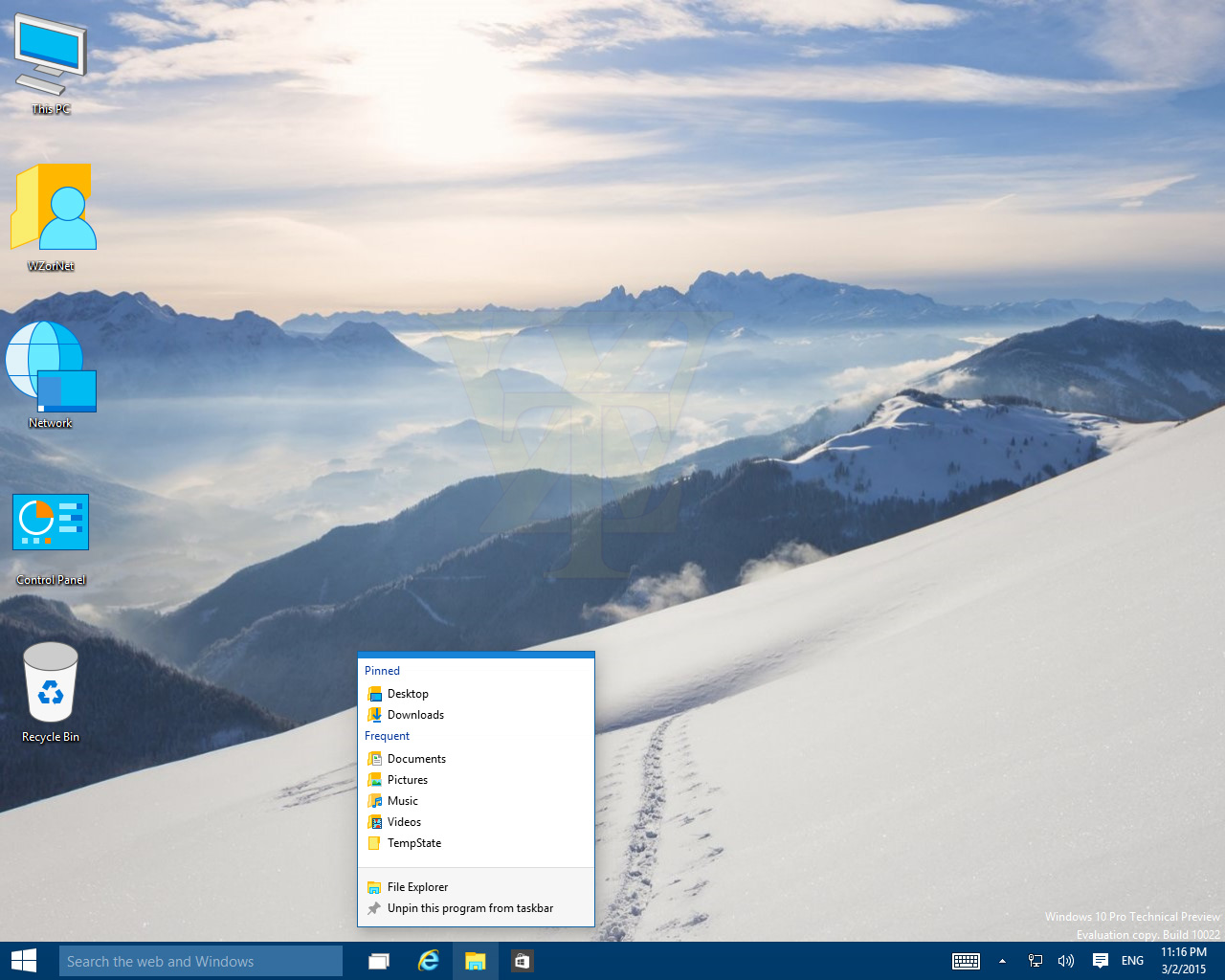
A week ago we had our first look at Windows 10 Professional Technical Preview Build 10022 in the form of screenshots from renowned Russian Windows leaker Wzor. There was also some screens and release notes for build 10014.
As you might expect that was just the start of the leak, and more screenshots from Build 10022 have appeared on the web (again from Wzor), including ones showing off the desktop, Settings, Task View and more.
The first thing to say is the changes on show in Build 10022 are minimal. If you’re hoping to see a ton of new features or improvements then you will be disappointed. It looks as if the new build is mostly focused on under the hood improvements.
That said, it’s always good to see how things are progressing with the new OS.
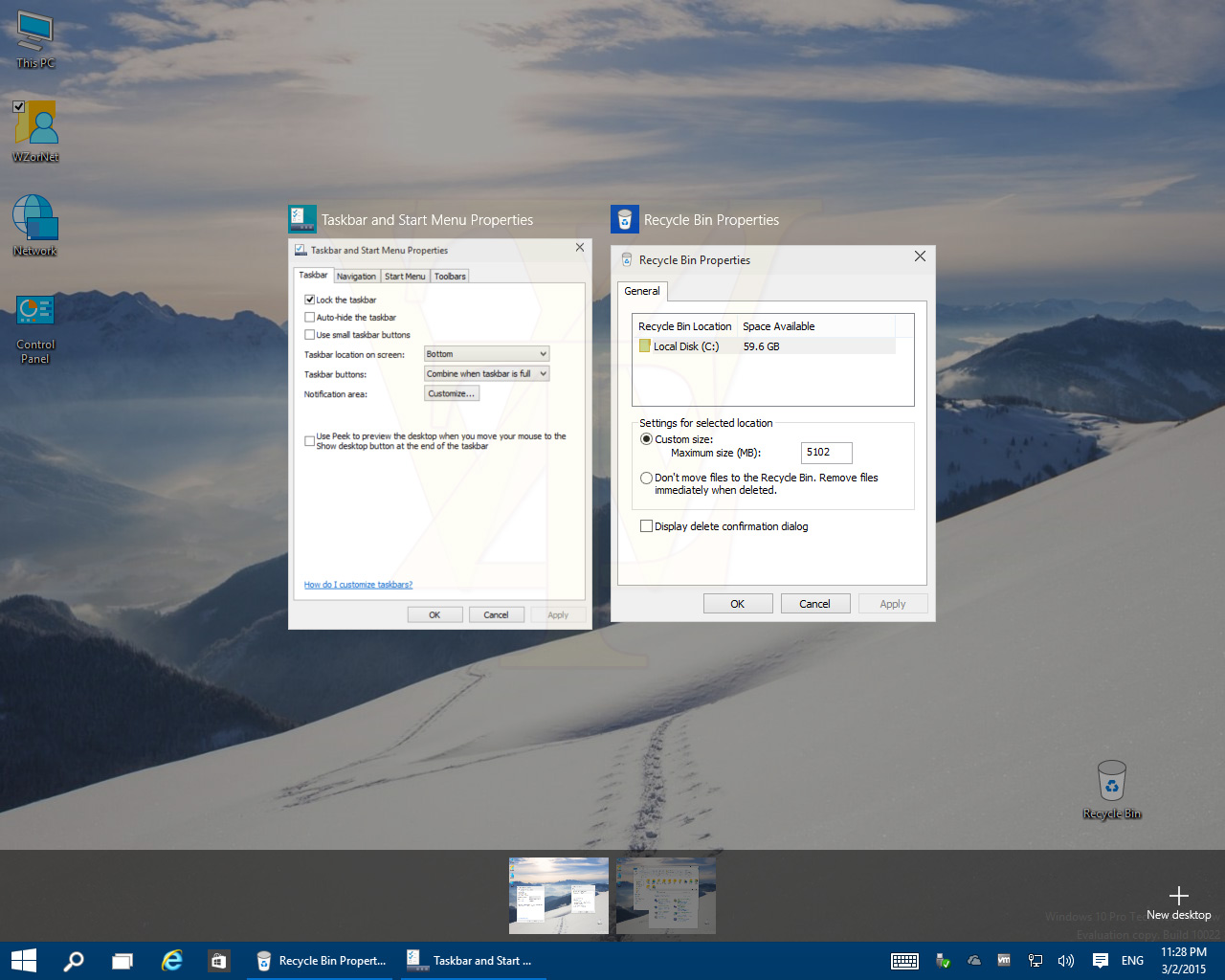
Changes we have noted are the "New desktop" button in the Task View UI has shifted over to the right (rather than appearing next to existing desktops), which seems like a much more sensible location for it. The bar with the desktops in it has gained some transparency too. The rather weird icons, which I’m really not a fan of (is Microsoft employing children in its art department now?), can be seen clearly in the desktop shot.
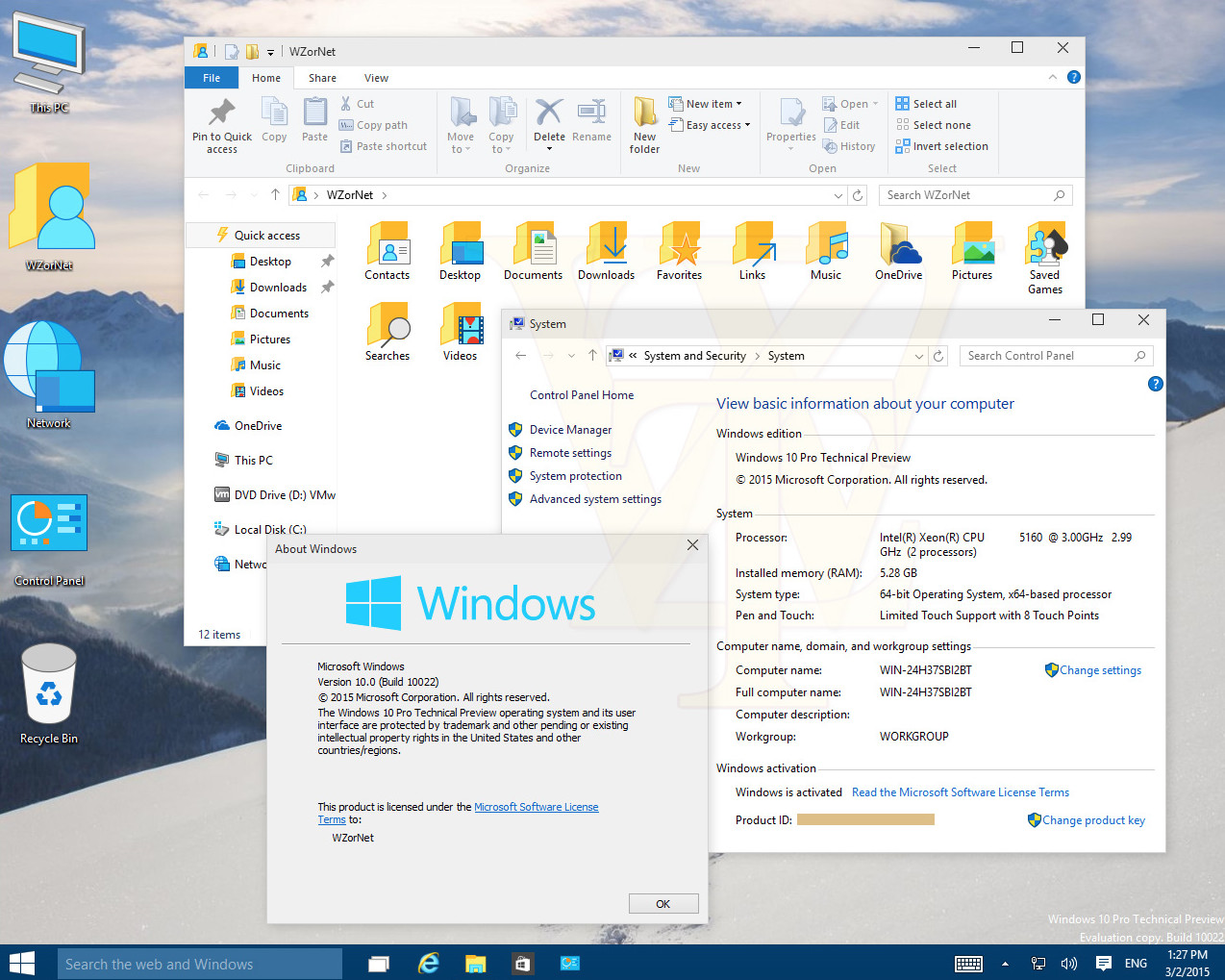
Microsoft didn’t release a new version of Windows 10 last month, so it’s hoped we’ll see a new build pushed out soon.
-

Happy! 20th! Birthday! Yahoo!
Publié: mars 2, 2015, 9:24pm CET par Wayne Williams

Earlier I posted that Yahoo had lost market share in February, despite now being the default search engine in Firefox for US users. But boy do I feel churlish now as it turns out today is Yahoo’s birthday, and I’m sure with a bit of thought I could have come up with a better gift.
Yahoo is officially 20 years old, and while the company has certainly seen better days, it’s also survived through some turbulent times. In 2008 Microsoft tried to buy it for about $47.5bn, but Yahoo wanted to get more money, a move which backfired badly. Instead of a sale, the company ended up agreeing to outsource search to Bing, a move at the time my colleague Joe Wilcox described, rightly, as a "strange one". Microsoft, he said was "Dumb", and Yahoo was "Dumber".
Under the control of Marissa Mayer, ex-Google employee #20, Yahoo has failed to regain the importance and relevance it once enjoyed, but she has stabilized it, and made some smart moves -- buying Tumblr was one, increasing Flickr’s free storage to 1TB was another, and getting Yahoo Search into Firefox is a third -- even if that last one isn’t exactly paying dividends yet.
In a blog post headed "Thank You For The Last 20 Years" (which my colleague Mark Wilson rightly says sounds like a "going out of business" announcement) David Filo, Co-Founder & Chief Yahoo, says:
In 1995, Jerry and I started Yahoo to help people more easily navigate the web. We wanted to build a guide. When we came up with the idea, it wasn’t designed to be a business, it was simply something we found useful. When we realized other people found it useful, we were motivated to work on it even more.
Twenty years later, the core of Yahoo is still the same. We are driven by the same purpose -- to be your guide around the web. You may not know how much you motivate us every day by using our products and sharing your ideas, but you do. Thank you.
Technology is about constant reinvention. Every day brings something new and in many ways, it feels like we’re just getting started. We’re in a different place than we were 20 years ago, but the best opportunities lie ahead. We want to continue building products that you love and that might make your lives better.
Thank you again for coming to Yahoo every day and inspiring us for the last two decades. I can’t wait to see what the next 20 years brings.
Technology is about constant reinvention, that’s true. Look at companies like Microsoft and Apple which have not only been around for decades, they’ve managed against all odds to stay at the top of their game. Apple is the most valuable company in the world, and Microsoft has numerous billion dollar businesses. Even young whippersnapper Google knows how important reinvention is.
Yahoo isn’t a company that’s managed to master the art of reinvention -- yet. But if it wants to be around for another 20 years, it will have to find a way to do so. The best opportunities probably do lie ahead for Yahoo, but whether it will be smart enough to grab them remains to be seen.
And yes, I know that headline is far, far too obvious.
Image Credit: Laurent Renault / Shutterstock
-

Windows Phone's biggest problem isn't apps
Publié: mars 2, 2015, 4:22pm CET par Wayne Williams
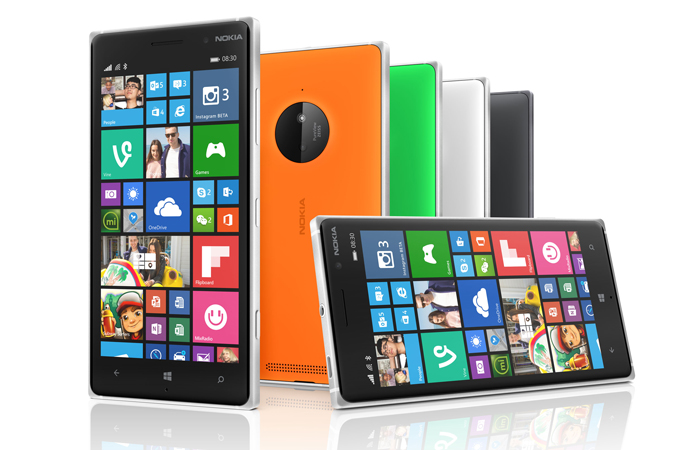
My colleague Brian Fagioli was right to reject Microsoft’s laughable claim that Windows Phone is experiencing 'impressive growth', and to also brand the tiled mobile OS as a failure. Android and iOS completely dominate the mobile space, and Microsoft -- which owns the desktop -- is nothing but a bit player.
If you ask anyone why Microsoft has failed to succeed they will probably say "apps". The Windows Store has a fraction of the apps found in the Apple App Store and Google Play (aside from the main names, few of the many apps I used regularly on my iPhone are available on Windows Phone) and there are dodgy clones and fakes to be found throughout the store. But while that is definitely a factor I think the real blame for Windows Phone’s failure lies elsewhere.
When we talk about "Windows Phone" we’re really talking about Microsoft’s Lumia range. Lumias account for 95 percent of the total Windows Phone 8.x smartphones worldwide. All the other device manufacturers don’t really amount to much.
So I think we can agree the success or failure of the Lumia handsets is -- for the foreseeable future at least -- key to the success or failure of Windows Phone.
Let’s look at the phones in the Lumia range. There’s the 930, the 630, 530, the 735, the 830, the 820, the 1020… The list of devices goes on, but they all share one thing in common. A pretty meaningless number-based name. And herein lies the problem.
Who, aside from the most diehard Microsoft/Nokia fan, can tell you the difference between the Lumia 635, 630 and 625? No one. The name seemingly says nothing about the phone. Gives you no clue, at all, why you should buy one model over another. You need to do research, compare the devices, and there are just so many Lumia models it’s impossible to know where to start unless you’ve read a review and go into a store and confidently buy that one model.
Microsoft might have inherited the frankly stupid naming convention from Nokia, which in turn borrowed it from BMW (for the record, with Lumias, the first digit is the device class, the second is the device generation and the third is the release version in that generation, or a region) but it doesn’t have to stick with it. It can, and should, move on.
Here’s what I think Microsoft should do with the Lumia range.
Create a flagship. Not a cheap pretend one like the Lumia 830, a proper full blown flagship Windows Phone. Make it out of metal, give it a premium price and a premium name -- Lumia One. (I’d suggest Lumia Aspire, but Acer might have something to say about that). Microsoft has no plans for a new flagship until Windows 10 is done and available, but when it does I just hope it doesn’t call it the Lumia 832, or something equally rubbish.
It should also give the other Lumias in the range a clear differential.
The Lumia 1020 is the phone which sells the Lumia’s photographic capabilities, so rename it the Lumia Photo (or Lumia Image).
Bundle unlimited OneDrive storage on one of the phones and give the world the Lumia Limitless.
The Lumia 930 can shoot ultra-HD footage? Call it the Lumia 4K then.
Microsoft could do limited edition models based on the many TV shows it sponsors. There might be a market for the Lumia Arrow, Lumia Dome or Lumia Walking Dead… (or maybe not).
The point is, in a market where you are failing -- which Windows Phone is -- you have to make products appeal to a wide audience, and as good as the Lumia 640 might be, that name renders it instantly forgettable. When this year’s Mobile World Congress is over you can guarantee no one will be talking about the Lumia six-something (whatever it’s called). It will fade into the background, just as the Harry Potter series likely would have done if the publishers had insisted on naming the books Rowling 520, Rowling 650, Rowling 870 etc.
Instead of Lumia 640 how about Lumia Elite, or Lumia Prime?
Do I seriously think all of Windows Phone’s problems could be fixed with a new naming convention? No, obviously not. There are issues with the OS which hopefully Windows 10 will address. There are problems with the lack and quality of apps, but Microsoft is (still) working on that.
The thing is, Microsoft needs to get phones into consumers’ hands, and one way to do that is to give the phone names people can remember and relate to. A numbering sequence that just goes up works for obvious reasons. Everyone knows the iPhone 6 followed the iPhone 5s and 5. The Samsung S6 follows the S5. No one knows which Lumia followed which, or what makes each model different from the next. Yes, a higher number is usually better, but not always. The Lumia 1520 is virtually the same as the 930, only larger. The Lumia 1320 is like a 630 only bigger. But the Lumia 930 is better than the 1320 where it matters. Confusing? It’s madness.
A name change won’t solve all of Windows Phone’s woes, but at least it will make the phones more appealing to the casual consumer, and right now for Windows Phone that's surely what matters the most.
-

Even propped up by Firefox, Yahoo search manages to lose market share
Publié: mars 2, 2015, 3:58pm CET par Wayne Williams
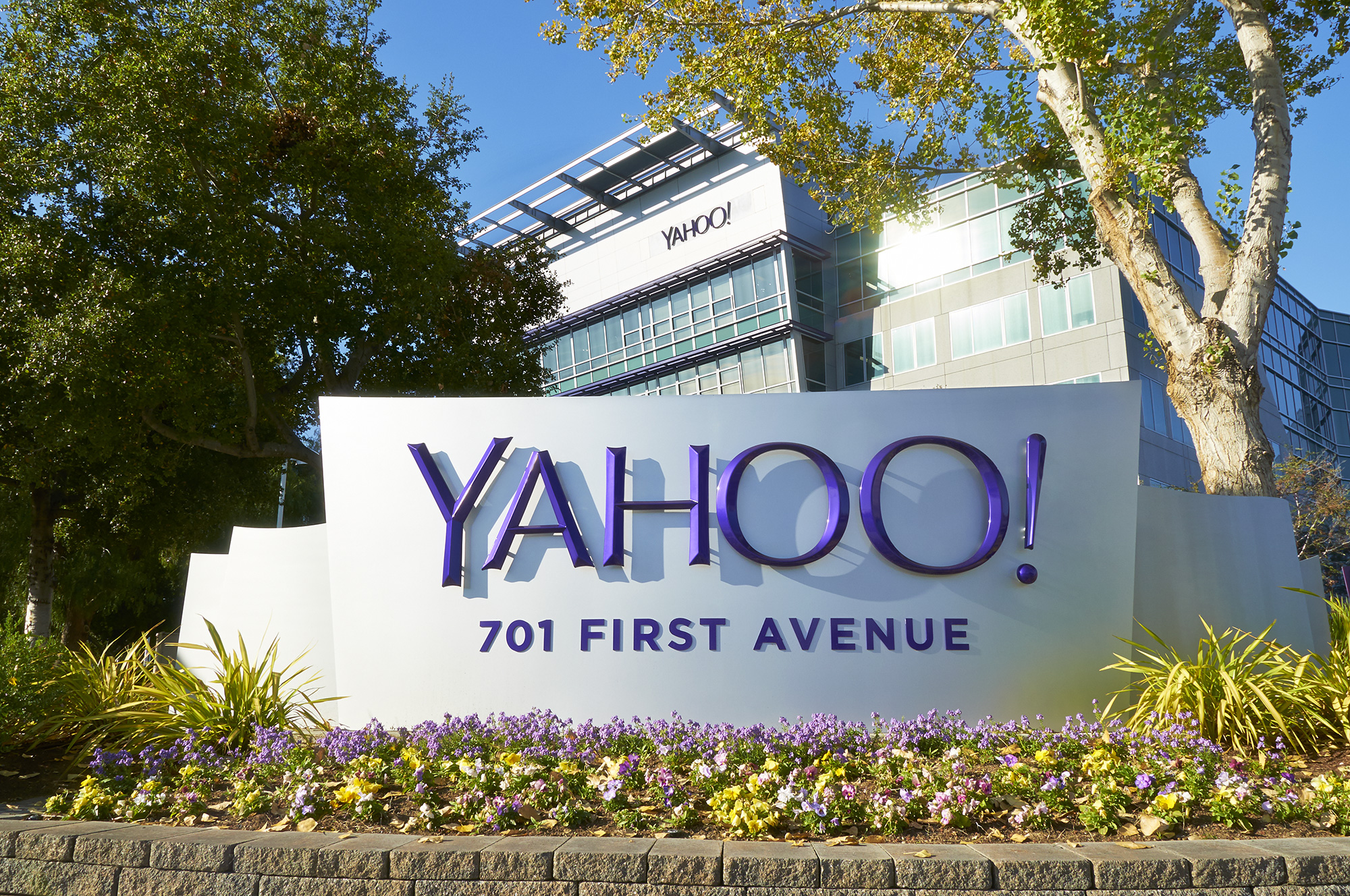
Three months ago Mozilla made the surprising decision to make Yahoo the default search provider in the US version of Firefox, replacing Google, its long standing search partner. The switch had immediate benefits for Yahoo which saw sizable usage gains in the US, going from 8.6 percent share in November 2014 to 10.4 percent in December.
However, anyone who thought this would be the start of a search renaissance for Yahoo is going to be disappointed to hear that in February Marissa Mayer’s firm went into reverse and lost share.
While it didn’t shed all of its recent gains, according to independent website analytics provider StatCounter, Yahoo dropped from 10.9 percent in January to 10.7 percent in February. It’s a marginal fall, but you would expect Yahoo’s inclusion in Firefox to drive growth for a while longer.
Google claimed 74.9 percent of US search followed by Bing on 12.5 percent.
Aodhan Cullen, StatCounter’s CEO, commented "While Yahoo’s search growth from the Mozilla deal has stalled, its share declined only slightly in February. It will be interesting to see if January was the month of peak impact for Yahoo as a result of the Mozilla deal and whether it can maintain its gains over the next few months".
It’s not just Firefox users changing the default search choice in their browser to blame for Yahoo’s stumble either. Yahoo usage in the US was down generally. Excluding Firefox users, the company’s search share in the US dropped from 8.2 percent in January to 8.1 percent in February.
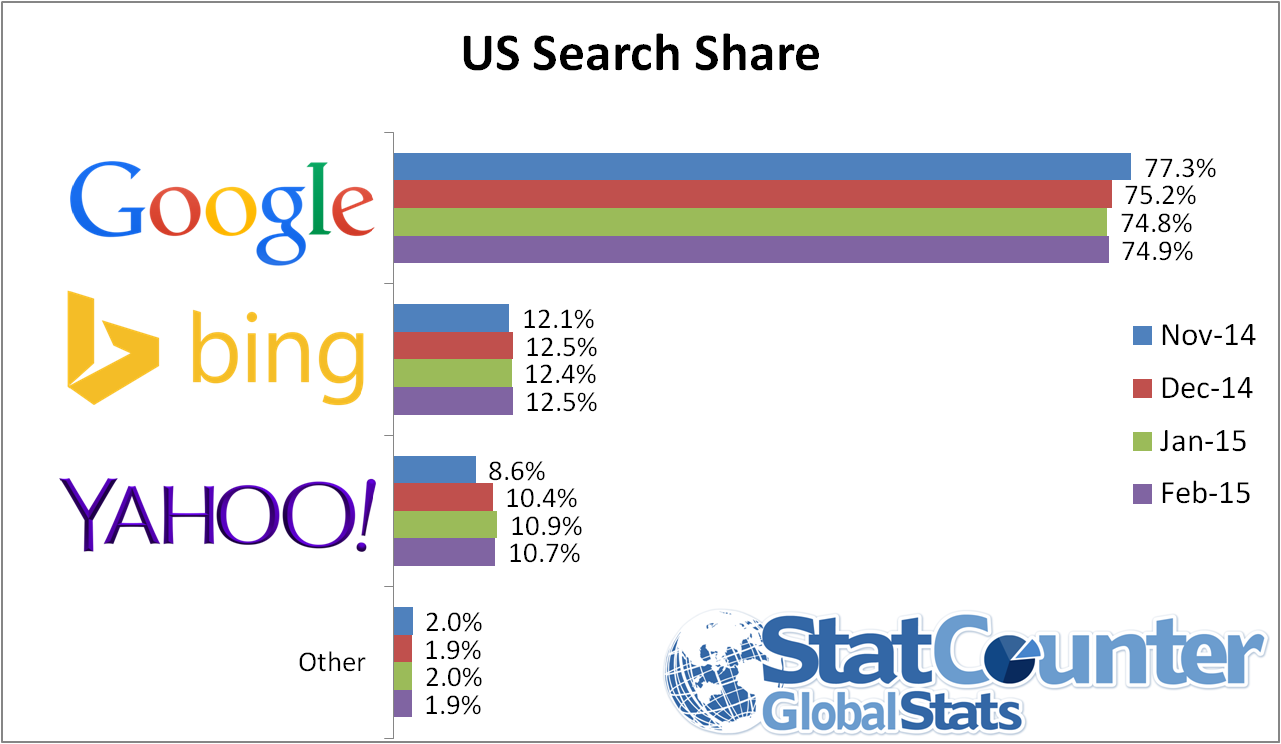
-

Watch Microsoft's Mobile World Congress 2015 press conference here live
Publié: mars 2, 2015, 8:12am CET par Wayne Williams
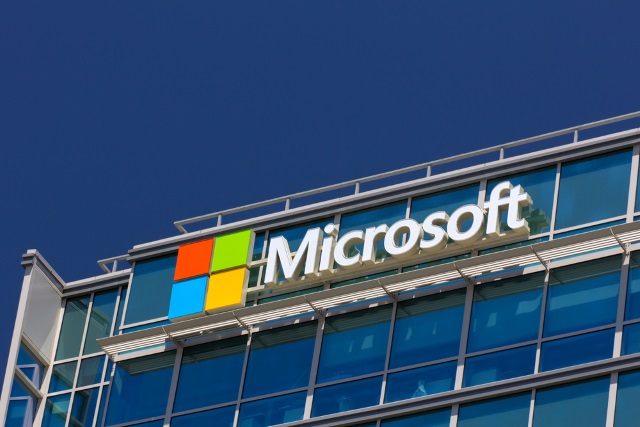
As you’ll already know, the 2015 Mobile World Congress (MWC) is going on right now, and most of the big players are announcing and launching new handsets. Samsung and HTC have announced new versions of popular phones, and Microsoft (in the form of Stephen Elop, Julia White and Neil Broadley) is set to take to the stage imminently.
Thanks to a premature news posting on Sunday we already know some of what to expect. A headline that made its way into feeds tells us the tech giant will be revealing the Lumia 640 and 640 XL, devices which, the company says, will keep "you prepared for anything".
Will there be anything else revealed? Very probably.
Don't worry, if you’re not at Mobile World Congress in Barcelona, you can find out exactly what Microsoft will be revealing by watching the live web stream here.
The press conference takes place at 08:30AM Barcelona time which is 02:30AM EST/07:30AM GMT.
Let us know what you think of the announcement in the comments below.
Photo credit: Ken Wolter / Shutterstock
-

Windows 8.x still nowhere near as popular as Windows XP
Publié: mars 1, 2015, 9:06am CET par Wayne Williams

It’s fair to say, Windows 8.x has enjoyed something of a rollercoaster ride when it comes to usage share. While it’s never been a popular operating system (quite the opposite in fact), share has gone up and down, with gains one month being wiped out by losses the following month.
NetMarketShare’s monthly usage share figures provide a decent guide as to how Microsoft’s tiled OS is doing, and it’s usually pretty interesting, although February was a fairly unexciting month.
Windows 8.1 went from 10.04 percent share to 10.49 percent, and Windows 8 went from 3.79 percent to 3.55 percent. In total 8.x gained 0.21 percentage points.
Windows 7 refuses to yield any ground and in February gained 0.07 percentage points, going from 55.92 percent to 55.99 percent. It remains by far and away the dominant operating system, and it’s Windows 7 users that Microsoft will need to target with Windows 10 as I suspect a large portion won’t upgrade to the new OS even if it is free.
Windows XP remains impressively resilient, and actually gains a modicum of usage share this month going from 18.93 percent to 19.15 percent.
All in all, February turned out to be a rather static month, with no real gains or losses to speak of which isn’t really surprising as anyone thinking of changing operating systems is likely now waiting for Windows 10 to arrive. Talking of which, the Technical Preview now has 0.08 percent share of the desktop OS market.
Image Credit: racorn/Shutterstock
-

Happy 3rd birthday Raspberry Pi!
Publié: février 28, 2015, 4:22pm CET par Wayne Williams

Raspberry Pi celebrates its third birthday today. Well actually it doesn’t, as the super-affordable ARM GNU/Linux computer was launched on February 29 2012, in what was (obviously) a leap year, but it’s close enough.
In that time the Raspberry Pi has achieved staggering success. Two months ago it was revealed total sales had surpassed 5 million (and the Raspberry Pi Foundation says another half a million have been sold in this month alone), with new and updated models launched in the past year.
Eight months ago the Model B+ was announced, followed four months later by an improved and cheaper Model A+. And then, at the start of this month, the Raspberry Pi 2 appeared, promising 6x faster speeds and even the ability to run Windows 10 (if you’ve bought one of the new models you might want to check out my colleague Brian Fagioli’s getting started guide).
One thing has remained constant in all that time though -- the price.
While commercial companies look to charge as much as they can get away with for new models, the non-profit Raspberry Pi Foundation sells its devices for as cheaply as it’s possible to do. The Raspberry Pi 2 might be a huge step up from the Model B and B+, but it’s still just $35/£25.
We’re huge fans of the Raspberry Pi at BetaNews as you can tell from past coverage, and we’re thrilled by the success it. So much has been achieved in three short years we can’t wait to see what comes next.
Two years ago I chatted to Liz Upton, Head of Communications at Raspberry Pi Foundation (and wife of the foundation’s Executive Director Eben), about their eventful first year, and plans for the future and it's worth revisiting some of those early questions:
BN: How did the idea of Raspberry Pi come about?
LU: Back in 2006, when Eben was teaching at the University of Cambridge he started to notice a decline in both the numbers of kids applying to read Computer Science, and in the level of knowledge that those kids arrived at the university with. We talked about it with our friends in the pub, like you do. And plenty of them thought it was a real problem too -- some of them thought it was such a problem that we came together and decided we'd try to do something about it. We had a hypothesis: that the fall in numbers and skills had to do with the disappearance of programmable machines in kids' lives. Computers like the BBC Micro or the Amiga had been replaced from the bottom end by sealed-unit, black-box consoles, whose whole business model is that you shouldn't be able to program them. And from the top, there was the PC. Of course, a PC is a wonderfully programmable machine; but in most families it's also a very vital tool for family life. It's where you do your banking or your homework. And many kids aren't allowed to mess around with the family PC for fear of breaking it. We felt a very cheap, programmable unit that kids could buy with their own pocket money, so they had a sense of ownership, was a possible solution. It's still early days, but on seeing some of the kids who've had a Pi for some months now, I've a feeling we were on to something.
BN: Where did the name come from?
LU: "Raspberry" comes from the tech industry's fondness for fruit names (there are lots of fruit-named computer companies, like Apricot, Tangerine…those, of course, are the only ones I can think of off the top of my head). And "Pi" is for Python, which has always been our first choice of teaching language (it was even before we knew what the hardware would look like). We initially thought that using Pi rather than Py would make for a really nice logo in the shape of the Greek letter, but as you can see, we didn't actually end up going that way!
BN: You’ve just sold your millionth Pi. Are you surprised by its success?
LU: Around the end of 2011, just before we started selling Pis, we started to worry that perhaps we'd bitten off more than we could chew. We'd managed to raise enough capital among ourselves to produce 20,000, and the plan was to use the profits from those Pis to seed the next batch (which would have taken a couple of months to make), and so on. We realized that we might have a problem on the day when we made a pre-released OS available for the Pi, well before anyone actually had one -- all of a sudden 60,000 people arrived on our website and downloaded this buggy software for a platform that didn't even exist yet. It suggested that the demand was much, much bigger than we'd anticipated. We decided that we'd need to revise the business model, because there was no way we could make enough fast enough with the resources we had to satisfy the sort of demand we were seeing. So we approached RS and Farnell, two British components companies which already had world-wide distribution networks in place, to see if they'd be interested in manufacturing the Pis for us under license so we could build up to a workable level of stock immediately. That was an enormous help in trying to deal with the demand we were seeing, but as you're probably aware, we've still been running to keep up, even though there is currently one Pi coming off the production line in Wales every few seconds!
BN: Raspberry Pi seems like a very British project, a modern day BBC Micro, but it's been well received in America. Why do you think that is?
LU: I think that a need for access to tools is universal. And those problems of introducing kids to programming -- the ubiquity of the family PC and the games console -- are universal too, at least in the developed world. Industry is starting to notice a decline in standards in young people too; we work with a number of industry bodies in the UK and in the US which are also promoting proper computing for young people, because they don't want to see a situation where the skills base dries up and blows away either. Eben and I will be at Intel International Science and Engineering Fair in Phoenix in a couple of months, to do some work with the kids there. I love doing this stuff; and it's always so much fun in the US, with the American tradition of science fairs (which we don't have a real equivalent of in the UK).
-

Xbox One selling badly in China
Publié: février 28, 2015, 1:23pm CET par Wayne Williams
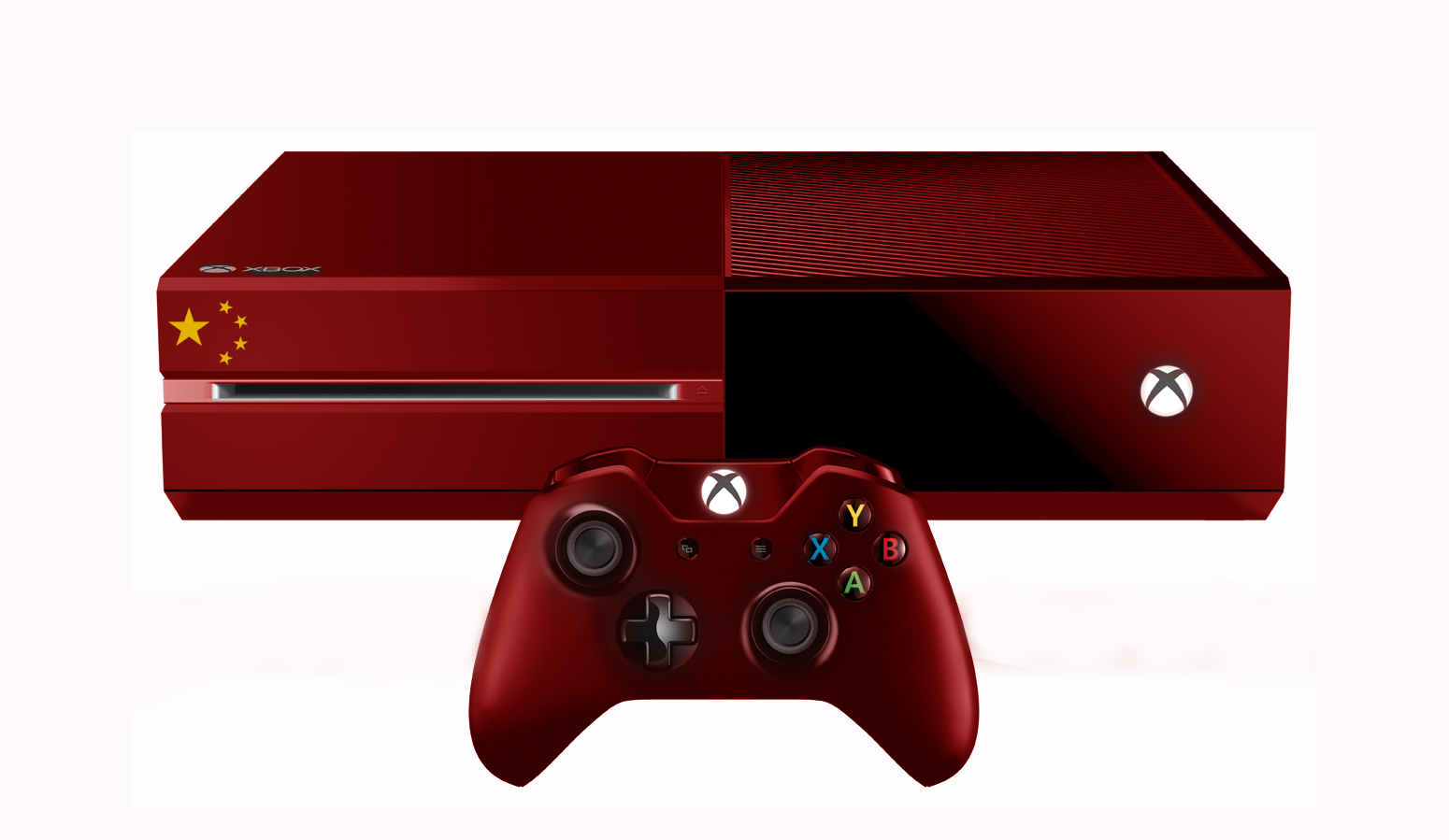
It was big news last year when Microsoft announced that it would officially start selling the Xbox One in China. The original September launch date came and went ("Despite strong and steady progress, we are going to need a bit more time to deliver the best experiences possible for our fans in China"), but eventually the next gen console made it on sale.
Although China gave the green-light for the sale of 5 million Xbox units, actual sales have been way, way below that. Launch numbers (including pre-orders) were just 100,000 units, and the company responsible for Xbox One sales in China has posted huge losses.
Techweb reports that the BesTV subsidiary lost 17.24 million yuan (US$2.75 million) in 2014.
While there are no current sales figures for the console, it’s been observed that Chinese online retailer Tmall shipped fewer than 200 units in January.
There are several reasons behind the lukewarm response to Microsoft's console including price (despite a post-launch price cut it’s still very expensive), the fact that only a limited number of games are available -- some of which have been censored -- and the console is region locked so games from elsewhere won’t play. Plus Chinese gamers simply aren’t used to paying for games.
Although the Xbox One was the first western games console to be sold officially in China since the ban on production and sales of such devices was lifted, it has been widely available through the gray market, so anyone interested in purchasing the console likely did so before it arrived officially.
It is of course too early to write off the Xbox One in China, but it’s far from an encouraging start for Microsoft which was banking on Chinese sales to help in its battle against Sony’s PS4. Recent predictions claim there will be 40 percent more PlayStation 4s in use than Xbox Ones by 2019.
-

One in three of the world's population now owns a smartphone
Publié: février 27, 2015, 2:26pm CET par Wayne Williams

Although smartphones are commonplace in the developed world, there are still plenty of people who don’t yet own one, and they are still far rarer in developing nations.
However, smartphone growth is on the up, and according to the latest findings from Strategy Analytics’ WSS (Smartphones) research service, the number of global smartphone users reached 2 billion in 2014.
By the end of 2105, the company predicts the number of users will have grown to 2.5 billion, or 35 percent of the world’s population. Strategy Analytics defines a "user" as a person who owns and uses one or more active smartphones.
That’s a sizable increase, as in 2013 just 1.5 billion (22 percent of the world’s population) owned a smartphone.
Neil Mawston, Executive Director, Wireless Smartphone Strategies, says: "The smartphone has become one of the most widespread electronic devices of all time. The smartphone is ubiquitous and it is rapidly evolving to become a central hub for controlling consumers’ daily lives in the home, car and office of the future".
Image Credit: Maxx-Studio/Shutterstock
-

Google will allow sexual content on Blogger after all
Publié: février 27, 2015, 11:48am CET par Wayne Williams

Three days ago Google announced that any Blogger blog found to contain nudity or explicit content would be converted into a private blog that only the owner could see.
Unsurprisingly, this move wasn't well received by the Blogger community, and today Google has backtracked.
Writing on the Google Product Forums, Jessica Pelegio, Social Product Support Manager at Google, confirms the search giant’s change of heart:
This week, we announced a change to Blogger’s porn policy. We’ve had a ton of feedback, in particular about the introduction of a retroactive change (some people have had accounts for 10+ years), but also about the negative impact on individuals who post sexually explicit content to express their identities. So rather than implement this change, we’ve decided to step up enforcement around our existing policy prohibiting commercial porn.
Blog owners should continue to mark any blogs containing sexually explicit content as “adult” so that they can be placed behind an “adult content” warning page.
Bloggers whose content is consistent with this and other policies do not need to make any changes to their blogs.
Thank you for your continued feedback.
This is a smart move from Google, and shows the company does listen to its users occasionally.
Image Credit: Charlie Bard/Shutterstock
-

Yet more aggressive Android adware found on Google Play
Publié: février 26, 2015, 11:55am CET par Wayne Williams
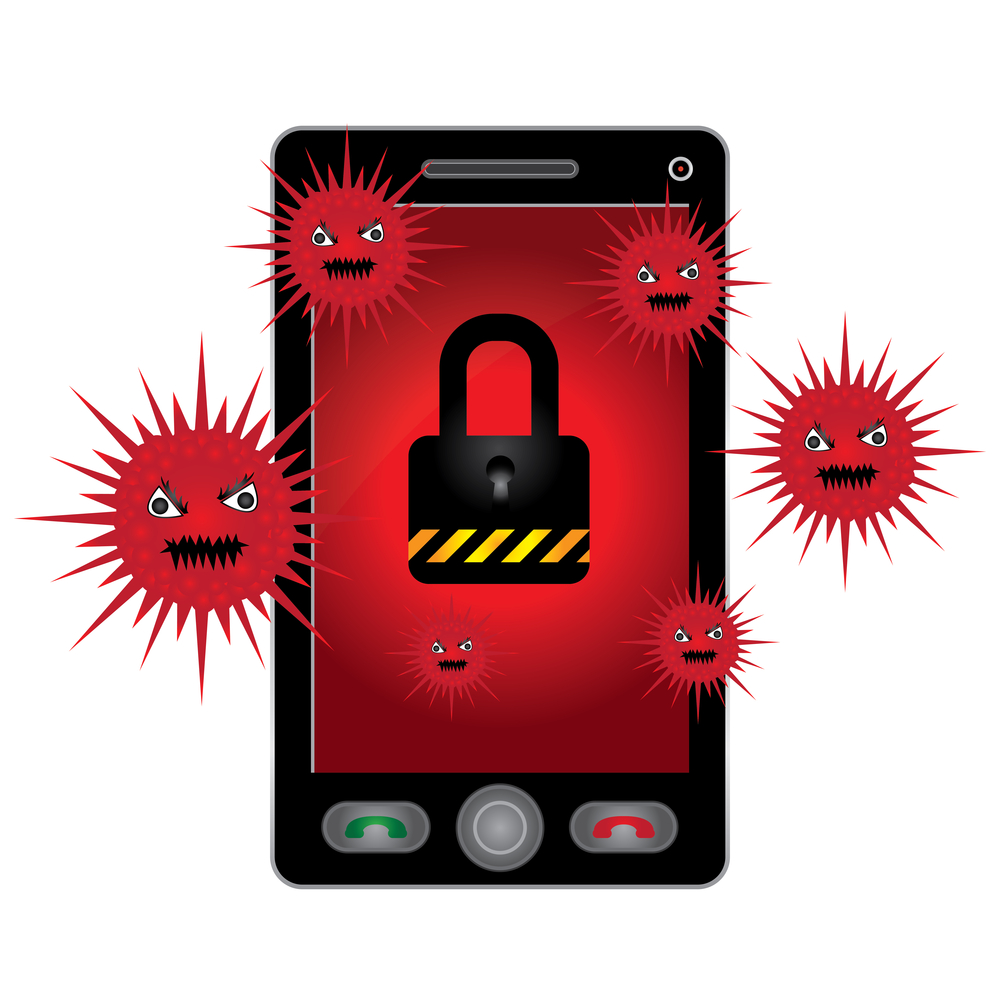
Google Play is supposed to be the safe place to download Android apps from, but that’s increasingly not the case. Three weeks ago security firm Avast detailed how it had found three popular Android apps riddled with Adware in Google’s store.
Today Bitdefender reports that it has found ten Google Play apps that are packed with aggressive adware that can do all sorts of nasty things.
According to the security company the apps can "subscribe users to premium-rated numbers using scareware messages or install additional apps that pack in even more ads".
You might think you could just uninstall a problem app, but these disguise themselves, so the user isn’t entirely sure of the source of the ads.
"If someone figures out that one of these apps is responsible for all the browser redirects and scareware messages, he’ll have a hard time finding and uninstalling the app in the Application Manager menu as it hides under the vague new name and not, for instance, 'What is my ip?' Less tech-savvy users will be thrown off the scent and the app will remain installed and running indefinitely", says Bitdefender security researcher Liviu Arsene.
So how are these apps getting past Google? Arsene says it’s probably "because the URL used to redirect users doesn’t actually disseminate malicious .apk files. Its purpose is to redirect browsers -- Android’s native browser, Chrome, Firefox, Facebook or even TinyBrowser -- to a specially created URL that tosses users around from one ad-displaying website to another".
It’s clear Google needs to do something to prevent Android adware from continually appearing on Google Play, but exactly what remains to be seen.
Image Credit: DeiMosz / Shutterstock
-

You can now download Windows 7 ISOs directly from Microsoft -- here's how
Publié: février 26, 2015, 11:26am CET par Wayne Williams
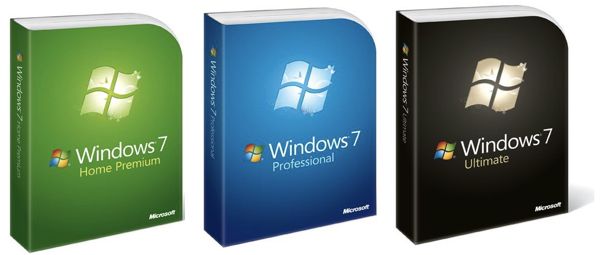
Can’t find your Windows 7 disc but need it to do a fresh install or run a copy of Windows in a virtualized environment? The obvious solution is to download a copy of the operating system in ISO format.
Oddly though, Microsoft has avoided offering Windows 7 ISOs for download -- the only solution previously was to grab a copy from Digital River, Microsoft’s official content delivery partner for Windows 7. That’s all changed now though, as a new Microsoft Software Recovery center lets you download Windows 7 directly from the software giant itself.
The process of grabbing an ISO is very straightforward, but you will need to have your product key to hand. So if you can’t find the documentation that came with your disc (and can’t find the disc itself) and your Windows installation is so screwed up you can’t get the product key from there, you’re in trouble.
If Windows is working you can find out the key by using NirSoft’s ProduKey. Just run it and the details will be displayed in the program window (along with keys for Internet Explorer and Microsoft Office if installed). Right-click the entry to copy the key.
Once you have the details to hand, go to the Software Recovery Center and enter the key into the Product Key box. Select your product language and click the button to Verify Product Key. When the key has been validated you’ll be able to download the Windows 7 ISO and burn it to disc or a USB flash drive.
Microsoft Software Recovery only accepts retail keys. If you have an OEM version of Windows you’ll have to find another way of grabbing the ISO. Digital River is no longer an option as the links have been removed.
Windows 8.1 users can get an ISO of that operating system from here, and ISOs for Windows 10 Technical Preview can be found here.
-

Seagate Wireless: Portable mobile storage that can stream media to up to three devices at once [Review]
Publié: février 25, 2015, 1:06pm CET par Wayne Williams
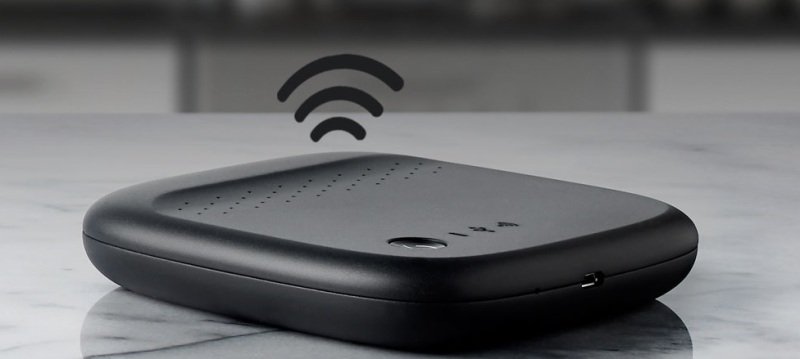
Unless you and your family are into just the one tech manufacturer -- Apple say -- the chances are you will have various devices running different operating systems. In my home, for example, there are three Windows PCs, two Android phones, two Android tablets, an iPad and an iPhone. All of which have media -- photos, videos, music -- stored on them.
There are various ways to make all of this content accessible across the different devices, but Seagate Wireless from Ebuyer is a simple, yet powerful solution. It’s a portable, battery powered 500GB drive with a built-in wireless network that can stream content to up to three smartphones, tablets and laptops simultaneously.
Dimensions wise it’s 125.36mm x 125.36mm x 24.5mm and sits nicely in the palm of your hand. It weighs just 281 grams.
Setting up the Seagate Wireless is very straightforward -- you press the on switch and then wait for 60 seconds while the built-in Wi-Fi network initializes, during which time you can download the free apps you require for your mobile devices. There are apps for iOS, Android (Google Play and Amazon) and Windows. Then you just connect your device(s) to the Seagate Wireless network and access the content stored on the drive, or copy over new media or documents. You can connect a PC to the drive in the same way. It’s so easy there’s no manual included, just a Quick Start leaflet. Should you require more in-depth literature, there’s a PDF manual you can download from here.
If you have a lot of files you want to copy to or from the drive you can connect it to your PC via USB 2.0 (turn it off first). You use the same method to charge the device. Fully charged the non-replaceable lithium-ion battery will give you around 6 hours active use. The app will show you the current charge remaining.
You don’t need to disconnect from Seagate Wireless’s network and reconnect to your own Wi-Fi in order to access the internet -- just connect the device to your network, and you can view content stored on the drive and go online at the same time.
You can browse Media Libraries (Videos, Photos, Music, Documents, and Recent) or Folders in the app. Content can be sorted by title, date, size and type, and filtered using the options at the top. Select Photos, for example, and you can view them by Albums, Day Taken, or Slideshows. Videos can be sorted by Albums, Genres, or Years. If you’re looking for a particular file you can search for it by name.
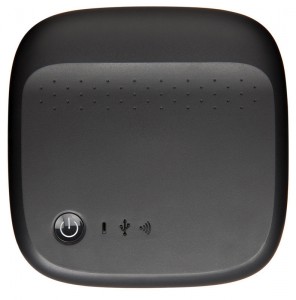 Media can be played, downloaded, saved to the device, deleted, shared, and so on.
Media can be played, downloaded, saved to the device, deleted, shared, and so on.The native player on iOS can handle common media formats, but if a file is unrecognized you’ll be prompted to choose a different app to use. The device can stream content to Chromecast, Roku and LG Smart TVs, which is useful. I’ve found it great for viewing holiday photos and videos on the big screen via Chromecast.
The Settings screen lets you shut down and restart Seagate Wireless, reset to factory defaults, rebuild the database, and turn the Wi-Fi password on or off. You can also enable auto upload so all of the photos and videos from your mobile phones or tablets are automatically backed up to the drive.
I’ve been using the Seagate Wireless quite a lot since it arrived and have found it useful for all sorts of purposes, including viewing photos in the car, and entertaining my young daughter with a movie on a long flight. 500GB might not seem like a lot of storage in these days of multi-terabyte drives, but (according to Seagate) it’s enough to hold over 150 HD movies, 62,500 songs or 50,000 photos, and of course it’s intended as a streaming device rather than a backup drive.
If you want a simple way for the whole family (well up to three members at least) to access content like home videos, photos, documents, and even blockbuster movies at the same time, Seagate Wireless is an excellent choice. I’d definitely recommend it.
It is available in Green, Blue, Red, White, and Black and costs £107 from Ebuyer with free delivery.
-

Dropbox users can get 100GB free bonus storage on OneDrive -- here's how
Publié: février 19, 2015, 8:43pm CET par Wayne Williams
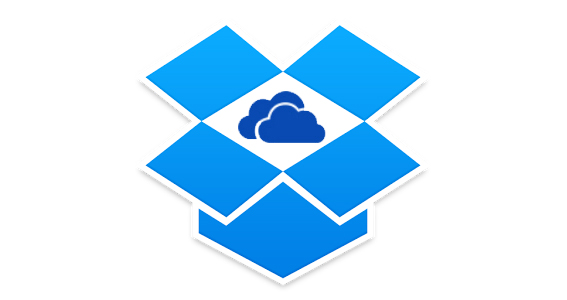
Earlier today my colleague Mihaita Bamburic explained how to get 100 GB of free OneDrive storage courtesy of Bing Rewards. It’s a great offer, available worldwide, and all you have to do is click a single link to claim your bonus storage.
Of course you can never have too much cloud storage, and the great news is Microsoft is giving away another 100 GB free, this time to Dropbox users (sign up for a free account if you don’t already have one). Make use of both free offers and boom, that’s 200 GB of free additional storage claimed in under five minutes.
As with the Bing Rewards offer, the process of claiming your extra 100 GB is very straightforward, and available worldwide.
Just click this link and then click the "Verify and get my storage" button. You’ll need to save a OneDrive Getting Started document to your Dropbox. That’s it -- the 100 GB will be added to your total.
The free storage claimed through Bing Offers lasts for two years, while the Dropbox storage is only good for one year, but even so, it’s a great bonus.
-

Happy birthday Photoshop -- 25 years old today!
Publié: février 19, 2015, 12:21pm CET par Wayne Williams
These days there are a lot of image editors to choose from, and they run on computers, the web, smartphones and tablets. Whatever your price range you’ll find one to suit. For me, however, there’s really only one photo editor, and that’s Photoshop. I’ve been relying on it for work and home image editing for a good 15 years (probably longer) and while I’ve used other rival packages, I always end up returning to Adobe’s powerful suite.
As an example, for the past few weeks I’ve been scanning in hundreds of old photos, slides and negatives. Removing dust, scratches and other flaws and rebuilding missing areas in all those has only been manageable thanks to brilliant time-saving Photoshop innovations like layers, the healing brush and content aware fill. Photoshop is, without question, my favorite program -- bar none.
This year Photoshop celebrates a massive milestone. First launched in 1990 (although its roots stretch back to a program called Display developed in 1987 by Thomas and John Knoll), it’s been changing our perception of the world for a quarter of a century now, being used for everything from creating logos and styling movies, to airbrushing away model and celebrity imperfections.
It is one of the most recognized software brands in the world, and like many popular products and services its name has become a verb. Just as you don’t search the web for something, you "Google it", so you don’t fix photo flaws in a picture, you "Photoshop it". People talk about "Photoshopping" photos even when they’re using Paint.NET or GIMP.
Photoshop has changed a lot over the years, as you’d expect, getting better and more powerful with each iteration, but also now powering Lightroom, and mobile apps. It’s managed to survive for 25 years, outlasting many wannabe rivals, by adapting to changing needs and technology.
"For 25 years, Photoshop has inspired artists and designers to craft images of stunning beauty and reality-bending creativity", says Shantanu Narayen, Adobe president and chief executive officer. "From desktop publishing, to fashion photography, movie production, website design, mobile app creation and now 3D Printing, Photoshop continues to redefine industries and creative possibilities. And today that Photoshop magic is available to millions of new users, thanks to Adobe Creative Cloud".
You can see the full historical timeline below.

-

Don't go to RedTube without protection -- the adult site could give you a nasty infection
Publié: février 18, 2015, 6:54pm CET par Wayne Williams
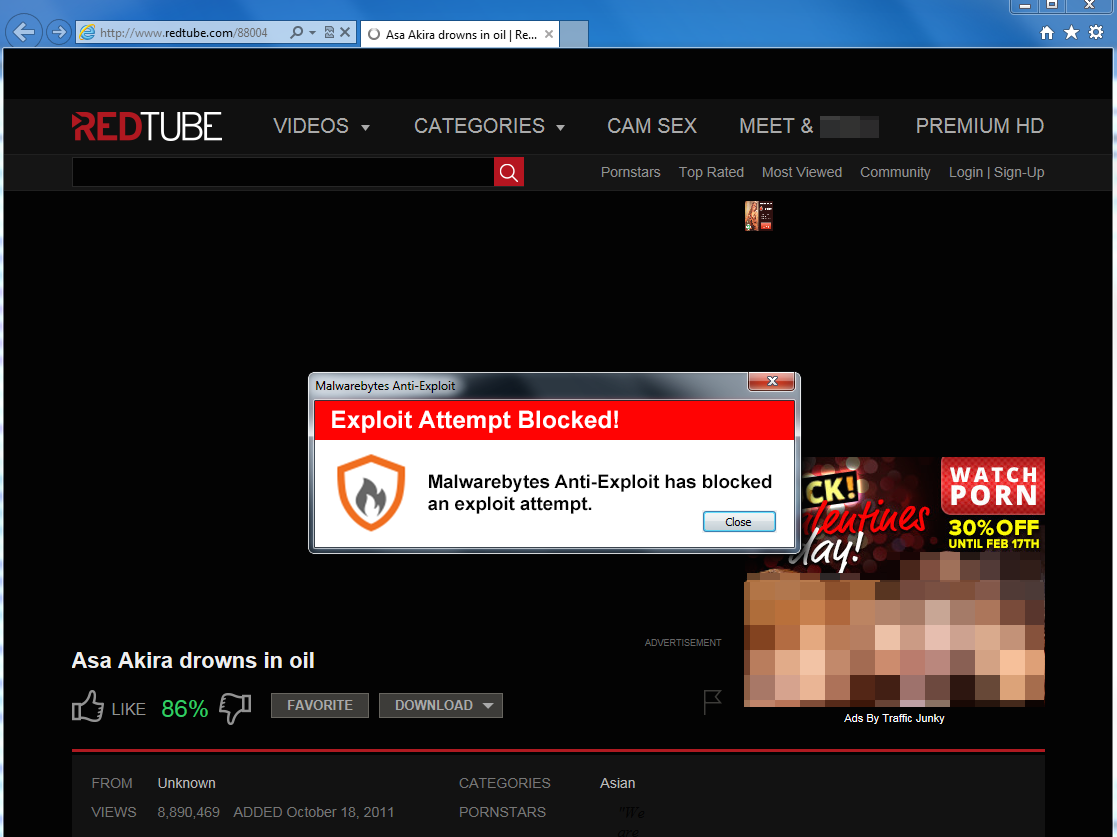
Yesterday I reported how Jamie Oliver’s website was serving up malware to unsuspecting visitors. It was a problem that was quickly fixed, but a worrying one seeing as the website has over 10 million visitors a month.
Now today, Malwarebytes -- which first discovered the Jamie Oliver exploit -- reports another compromised site that’s even more popular. Adult website RedTube.com sees over 300 million visits a month (some shorter than others), and currently has a malicious iframe in its source code.
This leads to a Flash exploit and a malware payload which Malwarebytes Anti-Malware detects as "Trojan.FakeMS.ED".
Adult sites do occasionally serve up malware through malicious advertising (malvertising), although it’s much rarer for the threat to come from the site itself.
While you might not expect the likes of Jamie Oliver’s site to infect your PC, you probably should be aware of the dangers you could face when dipping into the seedier side of the web, and should never go to adult sites without protection.
Stay safe out there!
-

40 percent more PlayStation 4s in use than Xbox Ones by 2019
Publié: février 18, 2015, 6:13pm CET par Wayne Williams

Over the holiday buying season, Microsoft managed to sell more Xbox One consoles in the US and UK than Sony sold PlayStation 4s, but globally Sony's console retains a healthy lead. Both companies like to lump together the current and previous generations of console, which makes comparing the Xbox One and PS4's sales tricky, but provides us with a general overview. During the holiday season, Microsoft sold 6.6 million Xbox consoles (360 and One) worldwide, while Sony sold 7.5 million PlayStations (PS4 and PS3). In 2014, Sony was the clear leader, having sold 18.8 million PlayStations, while Microsoft managed just 12.1 million Xboxes.
Obviously there’s still a long way to go, and a lot to play for in the latest round of the console wars and anything could happen in the next four or five years. Windows 10 could give the Xbox One a huge boost, and a run of great Xbox exclusive games could make a big difference too. However, the latest forecast from Strategy Analytics doesn’t see things improving for Microsoft in the coming years -- quite the opposite in fact.
Analyst Eric Smith predicts that there will be 40 percent more PS4s in use than Xbox Ones in 2019. He believes the Xbox One will have sold 57 million units by then -- which is far from shabby, but pales into insignificance when compared to his numbers for the PlayStation 4.
According to Smith, the PS4 will have sold 80 million units in the same time frame. A difference of some 23 million consoles.
There’s even a little graph (below) illustrating the predicted sales curves of all of today’s consoles, including older models like the original Xbox, PS2, GameCube, and Wii.
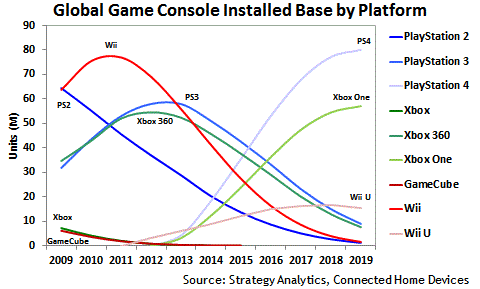
While this prediction is clearly bad news for Microsoft, David Mercer, Principal Analyst at Strategy Analytics, does offer up a positive note for the games consoles business:
We have heard so often over the past 10-20 years that the console’s days are numbered, with various reasons being cited, most recently the 'inevitability' of cloud gaming and competition from mobile devices. In spite of those apparent threats the demand for premium quality TV-based games seems to be as strong as ever, and doom-mongers have had to eat their words once again.
What do you think of this latest forecast? Do you think the PS4 really will outsell the Xbox One by such a huge margin?
-

Celebrity chef Jamie Oliver serves up an unpleasant malware surprise
Publié: février 17, 2015, 9:10pm CET par Wayne Williams
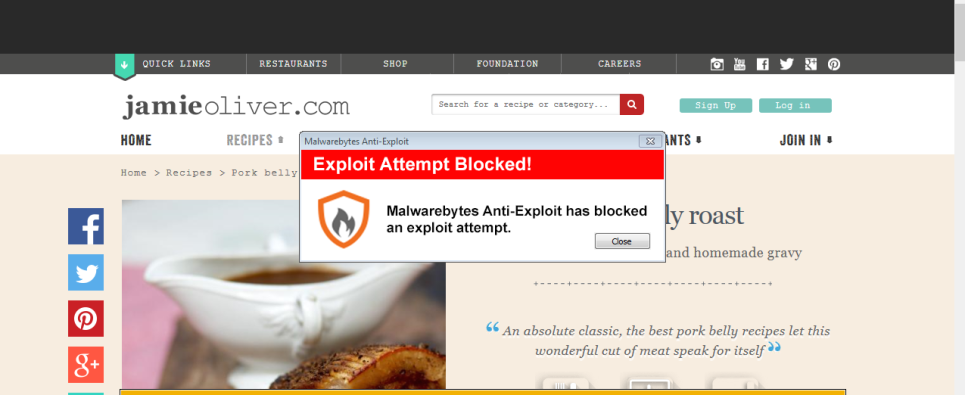
Most web-based threats come from malicious adverts placed on websites (aka malvertising), but Malwarebytes has discovered a well hidden malicious injection on the official website of Jamie Oliver which redirects unsuspecting visitors to an exploit kit.
The compromised site -- www.jamieoliver.com -- is currently ranked 519 in the UK (5,280 in the world), according to Alexa, with around 10 million visitors a month, which makes it a valuable target for hackers.
According to Malwarebytes, the malicious JavaScript injection creates an iframe and uses a second compromised site to redirect visitors to an exploit kit landing page where at least three exploits (Flash, Silverlight and Java) are launched. If the PC is not fully patched, a malicious dropper (Malwarebytesidentifies this as Trojan.Dorkbot.ED) downloads and runs.
Once infected, users face search engine hijacks, and the danger of being tricked into downloading malicious software updates.
As to how the compromised JavaScript found its way onto the site in the first place, Malwarebytes isn’t sure. "It could be a legitimate script that has been injected with additional content or a rogue script altogether" says senior security researcher Jérôme Segura. He also speculates that the cause might not be a plug-in at all but "perhaps stolen credentials".
You can find out more about the discovery on the Malwarebytes Unpacked blog.
-

Raspberry Pi sales surpass 5 million -- now most successful UK computer manufacturer ever
Publié: février 17, 2015, 7:31pm CET par Wayne Williams
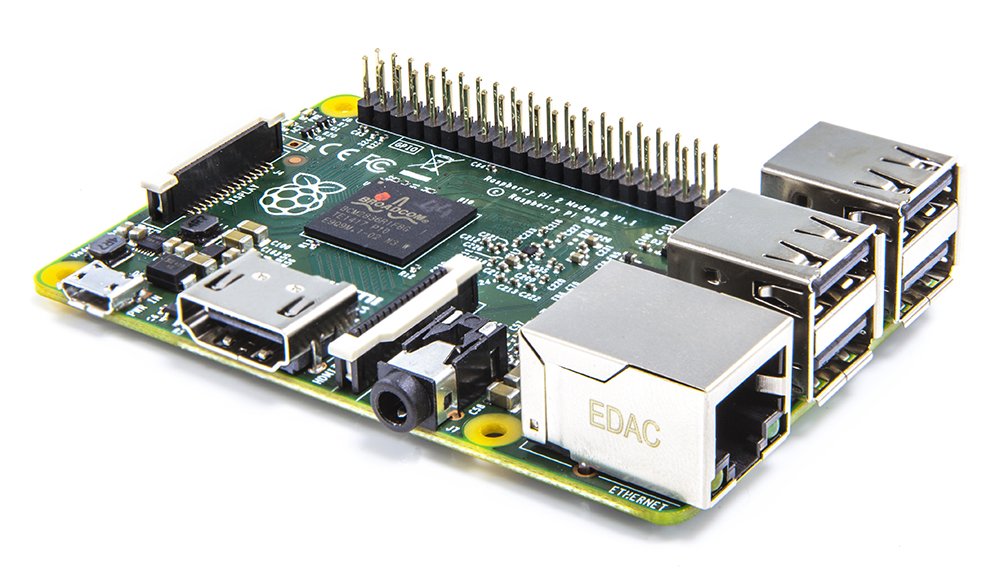
It’s fair to say Raspberry Pi, the super-affordable ARM GNU/Linux computer, has been a massive success. Originally envisaged as a way to get kids coding again as they did in the 1980s and 1990s, the device has found a massive fan base outside of the education system, and has been selling in impressive quantities since its launch in 2012.
The British success story sold more than a million units in its first year, but since then the pace has picked up, and the Raspberry Pi Foundation has just tweeted some staggering news -- it has now sold more than 5 million Raspberry Pis worldwide.
That’s impressive on its own, but it’s worth pointing out, as a follow-up tweet does, that means that the Raspberry Pi Foundation is now the biggest selling UK computer manufacturer ever -- dwarfing iconic British brands like Sinclair Research -- and with the launch of the new Raspberry Pi 2 that growth is unlikely to show any signs of abating.
In fact, there’s a good chance a large portion of the existing Pi owners will be upgrading to the new model (as my colleague Brian Fagioli did). Few people will quibble over spending $35 to get a new Pi that’s six times faster than the original, especially as it will be able to run Windows 10.
Perhaps most impressively, the majority of the sales have occurred in the past year, as the company only hit the two million milestone in November 2013.
Just confirmed the big news we’ve all been waiting for: we’ve now sold more than 5 million Raspberry Pis.
— Raspberry Pi (@Raspberry_Pi) February 17, 2015
-

File sharing site RapidShare is no more
Publié: février 10, 2015, 8:25pm CET par Wayne Williams
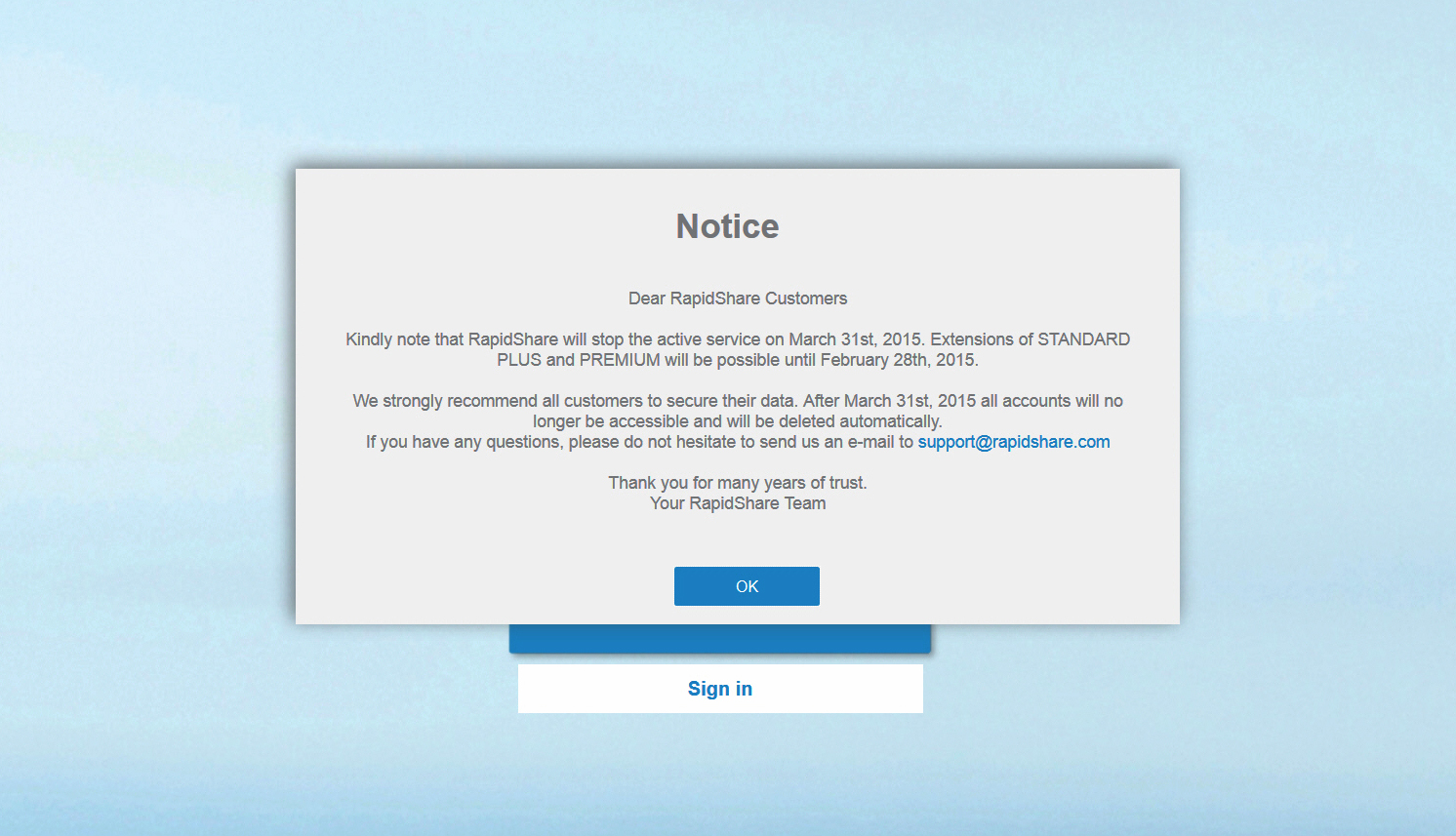
Things were seriously rocky for file sharing sites after MegaUpload was raided and shutdown three years ago. Several other sharing sites voluntarily closed their doors shortly after to avoid suffering the same fate, but since then it’s been relatively calm and business as usual among file sharing services.
So it’s a bit of a surprise (albeit not a massive one) to hear that Switzerland-based RapidShare, one of the first file hosting and sharing services on the Internet, is to shut down next month.
RapidShare launched in 2002 and has undergone a few changes over the years, including -- in the wake of MegaUpload being shut down -- making more of an effort to clamp down on people sharing illegal content through it.
The site hasn’t been doing well in recent years though, and shut down its free service, increased its prices, and let a large portion of its workforce go last year, but even so the final nail in the coffin is a bit of a shock.
If you visit the site now, you will be greeted with a message stating:
Dear RapidShare Customers
Kindly note that RapidShare will stop the active service on March 31st, 2015. Extensions of STANDARD PLUS and PREMIUM will be possible until February 28th, 2015.
We strongly recommend all customers to secure their data. After March 31st, 2015 all accounts will no longer be accessible and will be deleted automatically.
If you have any questions, please do not hesitate to send us an e-mail to support@rapidshare.comThank you for many years of trust.
Your RapidShare TeamSo, that’s it. After March 31st, all of RapidShare’s user accounts and data will be deleted and the site will be consigned to history.
Did you use RapidShare, and will you miss it?
-

Anonymous targets ISIS: 'You are a virus -- we are the cure'
Publié: février 9, 2015, 9:28am CET par Wayne Williams

A month ago hacker collective Anonymous vowed to go after terrorists, and shortly afterwards took down its first target, ansar-alhaqq.net.
That was just the first shot in Anonymous’ war on terror and the hacktivists have been actively targeting Islamic State-related Twitter and Facebook accounts to reduce the terrorist group’s ability to spread its message online.
A post on Pastebin lists a long number of Twitter handles targeted by Anonymous RedCult as part of #OpISIS, alongside Facebook accounts that Anonymous says appear to have close contact with the terrorist organization.
According to a video posted by Anonymous, the campaign is being waged against Islamic State by people from all races, countries, religions, and ethnicity, including "Muslims, Christians, Jews… hackers, crackers, hacktivists, phishers, agents, spies, or just the guy next door…" People "United as one, divided by zero", as Anonymous puts it.
In the video the collective also states "Remember the terrorists that are calling themselves Islamic State, ISIS, are not Muslims", before issuing a warning to the terrorists:
We will hunt you, take down your sites, accounts, emails, and expose you…
From now on, no safe place for you online…
You will be treated like a virus, and we are the cure…
We own the internet…
We are Anonymous; we are Legion; we do not forgive, we do not forget, Expect us.
Naturally, there is yet more to come from Anonymous, but it’s a solid start from the hacktivist collective that, as my colleague Alan Buckingham puts it, is breaking the hacker stereotype and standing up for what is right
-

Big names lined up for the Wearable Technology Show
Publié: février 6, 2015, 11:46am CET par Wayne Williams
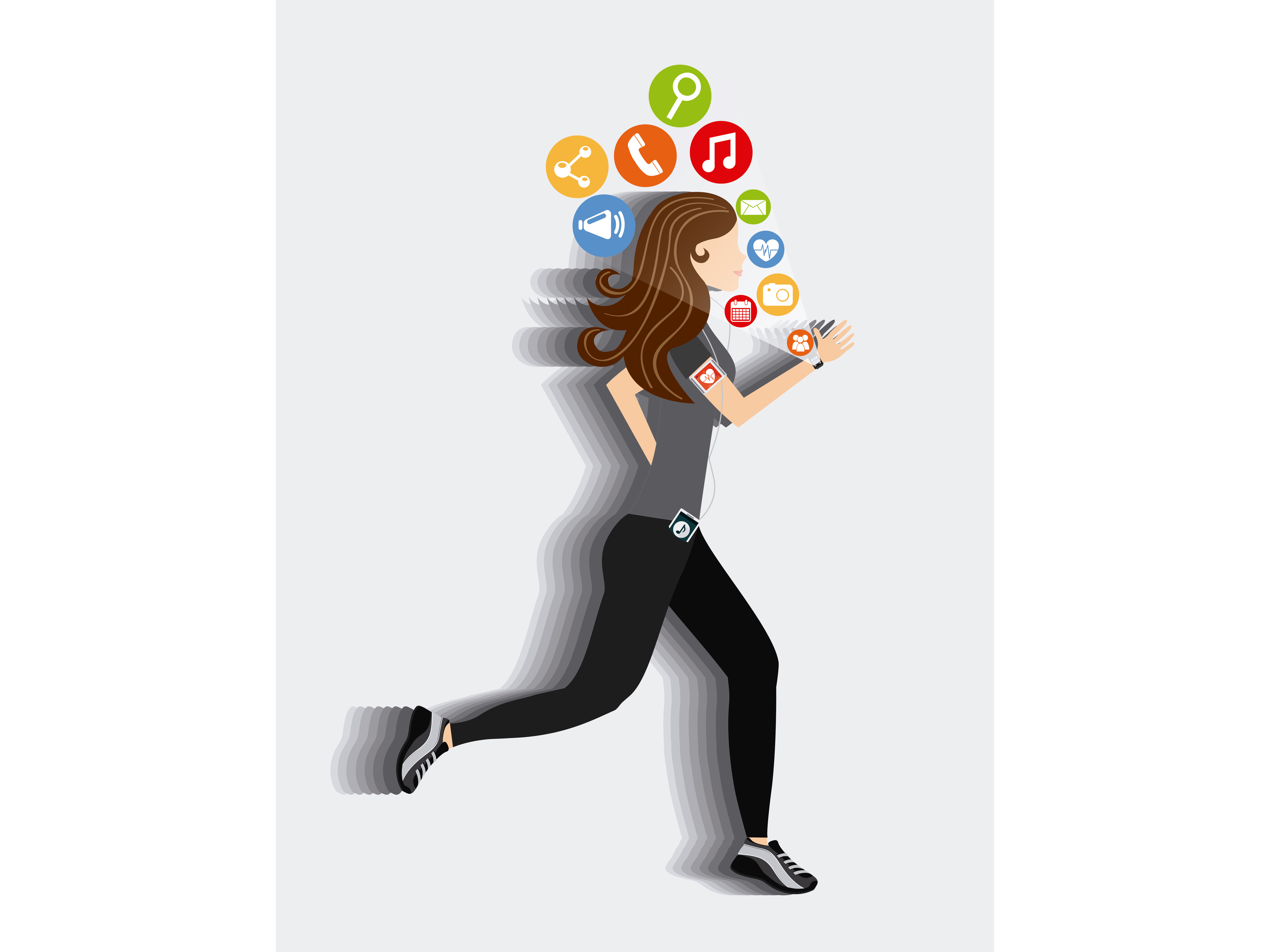
If CES is any indication, wearable technology is going to be huge this year, so it’s no surprise that the Wearable Technology Show has doubled in size for its second outing.
Boasting twice as many exhibitors and product launches as last year, the UK show moves to a new home at ExCeL in London, and will be co-located with the Augmented Reality Show, an event dedicated to AR, VR and smart glasses.
There will be more than 80 exhibitors including Intel, Jawbone, Misfit, Samsung and Withings, and the show will be divided up into four different zones -- Innovation; Fitness and iHealth; Smart Textiles and Fashion; and Wrist Innovation.
A conference program will feature over 200 speakers and nine dedicated tracks including Innovation and IOT; Wearable Start Up; Augmented Reality; Smart Textiles and Fashion; Connected Living; Medical, Performance Sports; Products, Payments and Retail; and Enterprise and M2M.
"Last year, we launched the Wearable Technology Show when wearables had just started to enter most people’s consciousness and curiosity was on the up. The whole idea of wearables was new and fresh and inviting", comments John Weir, COO, Wearable Technology Show.
"This year, we return with the Wearable Technology Show to a market bursting with new launches. Many have earmarked this year as the year the wearable market will prove itself. And I couldn’t agree more. The innovation and creativity hasn’t stopped. But now designers, futurists and start-ups have an even better idea of functionality and are creating products that solve real problems and make our lives easier, more efficient and more enjoyable".
The Wearable Technology Show takes place at ExCeL, London, on the 10-11 March 2015. You can find out more at www.wearabletechnologyshow.net.
Image Credit: gst/Shutterstock
-

The evolution of wireless generations -- from 1G to LTE Advanced
Publié: février 5, 2015, 3:12pm CET par Wayne Williams

The first mobile phones were released back in 1984 and were capable of making and receiving phone calls, but nothing else. Analog "brick" phones were large, heavy, and very dumb. You couldn’t send or receive data on them.
In 1991 that changed with the arrival of 2G technology which introduced the wonders of text messaging, and even email. Ten years later 3G changed the game entirely, and of course in 2009 4G/LTE arrived, making it possible to stream movies on your mobile.
Intel has put together an interesting infographic charting the evolution of wireless technology, from the very start when 1G was a thing (but no-one knew), to today and LTE-Advanced which will make it possible to download 100 minute HD videos in as little as 37 seconds (in theory at least).
The infographic reveals some interesting stats as well, including the average download speeds of each generation and mobile subscription numbers. In 1984 less than 1 percent of Americans had mobile subscriptions. Today around 96 percent do.
You can browse the full infographic below.
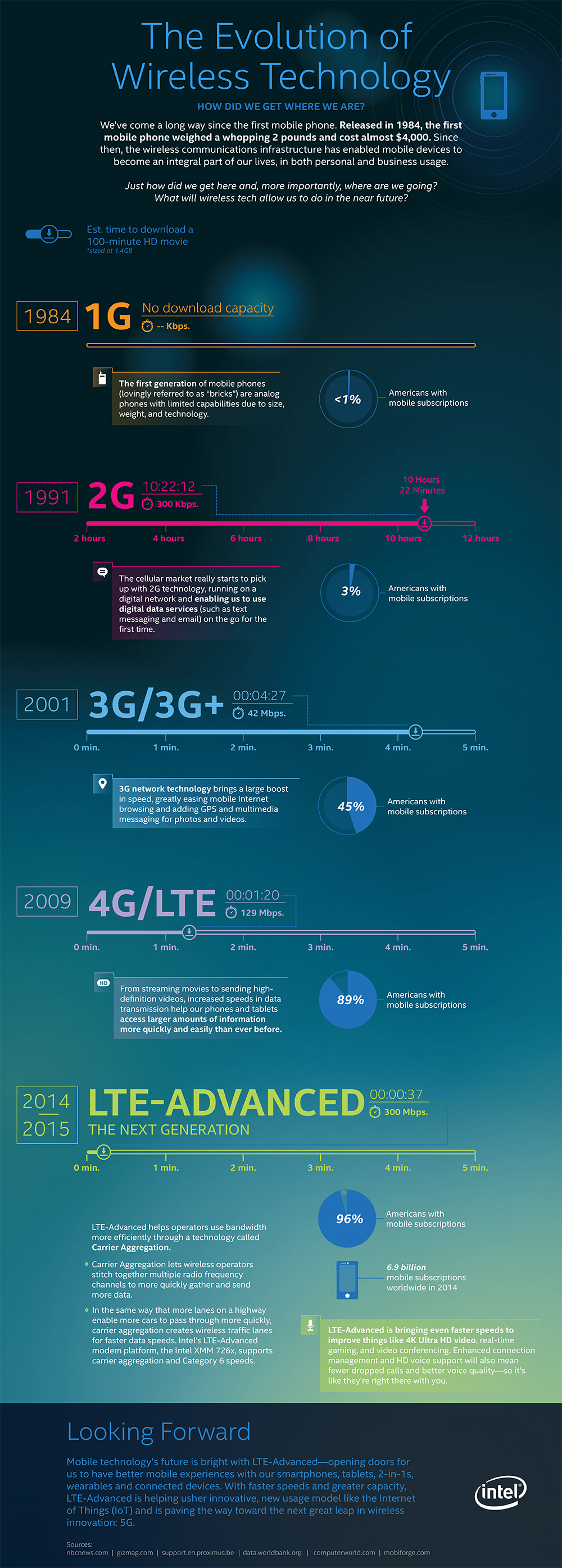
Infographic credit: Intel
-

BetaNews exclusive: Start testing Bitdefender Total Security 2015 -- 6 months for FREE!
Publié: février 5, 2015, 9:17am CET par Wayne Williams

We talk about data protection, but what about our actions? Internet users claim to care about their privacy and financial data, but in reality an alarming number of them fail to take basic measures to secure their bank accounts or digital identity. According to a survey carried out by Bitdefender in September 2014, one in three US-based computer users don’t use an antivirus solution, and as a result 46.9 percent have had their home devices infected with malware, while 7 percent encountered malware infections at work.
Bitdefender Total Security 2015 helps users fight off all e-threats, from viruses to identity theft and most every trick in between. Designed for the best user experience, Bitdefender offers full antimalware defense as well as other advanced safeguards including dedicated online banking and e-shopping security, device anti-theft, highly secure online backup and sync, social networking protection, and more.
Why Try It
- Offers best protection and best performance
- Easy to use and simple to understand -- manage security with one click
- Imperceptible, your PC will run extremely fast and silent
- Secures all your data online
- Helps recover your device in case of theft
Bitdefender Total Security 2015 builds on technology awarded Best Protection by AV-TEST for three years in a row. Bitdefender also achieved Best Performance thanks to its imperceptible scanning technology ensuring the fastest system speed.
Besides unrivaled antimalware protection, Bitdefender Total Security 2015 includes the OneClick Optimizer to free up hard disk space, secure online storage and device anti-theft, to help you find your computer should it be stolen.
Key Features
- OneClick Security
Engages security with a single click. Bitdefender OneClick Optimizer automatically speeds up your system and frees up disk space by running every known optimization. All in one click.
- Bitdefender Profiles
Prevents other applications from slowing you down when you work, play or watch movies.
- Autopilot
Provides a hassle-free experience by making optimal security-related decisions with no input from you.
- Two-Way Firewall
Monitors your Internet connections and prevents unauthorized access, even over a Wi-Fi network.
- Device Anti-Theft
Locates, locks, or even wipes your laptop from any Internet-connected device you have at hand.
Start testing Bitdefender Total Security 2015 for free! Simply enter your email address and Bitdefender will email you the license.
-

Raspberry Pi 2 arrives -- will run Windows 10!
Publié: février 2, 2015, 11:28am CET par Wayne Williams

The original Raspberry Pi Model B launched back in 2012, and got a big update in the form of the B+ last year. However, the core of the device -- the Broadcom BCM2835 application processor -- has stayed the same in all that time.
Given how much technology changes and improves in just the space of a single year, the Raspberry Pi was long overdue for a processor refresh, and today the Foundation launches the new and improved Raspberry Pi 2.
The bare bones credit card-sized computer gains an improved SoC, BCM2836 application processor that replaces the single 700MHz ARM11 with a 900MHz quad-core ARM Cortex-A7 complex. It also gets a full 1GB of SDRAM. It should be about six times faster than the old board.
The new model has the same form-factor as the existing Model B+, so while it’s faster, it's essentially the same -- you won’t need to get a different case, or make any other changes.
You will need an updated NOOBS or Raspbian image however, including an ARMv7 kernel and modules to use it.
As I said in the headline, the new Raspberry Pi 2 will be able to run Microsoft’s forthcoming operating system. Eben Upton, Raspberry Pi’s founder and CEO says:
For the last six months we’ve been working closely with Microsoft to bring the forthcoming Windows 10 to Raspberry Pi 2. Microsoft will have much more to share over the coming months. The Raspberry Pi 2-compatible version of Windows 10 will be available free of charge to makers.
You can find out more about this from Microsoft here.
Raspberry Pi 2 is available to buy from today priced at $35/£25. As always you can get it from the two main Raspberry Pi suppliers -- element14 or RS Components.
In case you’re wondering, the original Model B, and the newer B+, will continue to be available, as will the A+ (there are no plans for a Model A+ 2 yet).
-

Windows 8.1's market share remains utter rubbish
Publié: février 1, 2015, 9:55am CET par Wayne Williams

Last month, web analytics firm NetMarketShare released its usual batch of monthly desktop operating system usage share figures, and it showed Windows 8.x tumbling dramatically. The figure made little sense, and a day later the firm released revised data which showed the tiled OS still shedding a large chunk of share, but not quite as badly.
In December’s revised figures NetMarketShare had the OS falling 5.13 percentage points for a total share of 13.52 percent, placing it back way below Windows XP. This meant January’s figures were always going to be interesting. Surely the tiled OS would rally wouldn’t it? But of course this is Windows 8.x, Microsoft’s least successful operating system in recent memory, so no. Its usage share remains utterly rubbish.
Windows 8 went from 4.03 percent in December to 3.79 percent in January, a drop of 0.24 percentage points. Windows 8.1 went from 9.49 percent to 10.04 percent, gaining 0.5 percentage points. In total Windows 8.x grew by just 0.03 percentage points.
In comparison, Windows XP went from 18.26 percent to 18.93 percent. That’s an improvement of 0.67 percent -- twice as much as Windows 8.x managed.
Windows 7 went from 56.26 percent in December to 55.92 percent in January, a drop of 0.34 percentage points.
Overall, January saw very little action, with OS usage share only changing by a fraction here and there. The biggest story is that NetMarketShare’s reporting of Windows 8.x’s share tumbling last month seems to have been correct, which is bad news for Microsoft, although it’s used to bad news with Windows 8.x. No wonder it’s going to be giving away Windows 10 (which now has 0.05 percent share by the way) to avoid finding itself in this sort of embarrassing situation again.
Photo Credit: JIANG HONGYAN / Shutterstock
-

How the 'Health of Things' could replace your trip to the doctors [Q&A]
Publié: janvier 29, 2015, 3:42pm CET par Wayne Williams

One of the biggest trends of this year's CES was the "Health of Things", with wearable technology increasingly being connected to healthcare in order to enhance users' lives.
I spoke to health tech specialist Nudge about what exactly the "Health of Things" means to the general consumer and the impact it's having -- and will have -- on the tech and healthcare industries.
BN: What is the "Health of Things"? What role does Nudge play in this?
N: Like the Internet of Things, where a car can interact with a home or with a kitchen appliance, the Health of Things will allow healthcare systems to connect and interact with data from wearables, lifestyle apps and health trackers. This idea of the Health of Things, where devices, data, health professionals and patients are all connected and interacting, has the potential to disrupt the healthcare space.
All of the data being collected by connected devices can provide real value to healthcare providers. The idea behind the Heath of Things is to unlock and analyze this data in an actionable way that can lead to a faster and more accurate diagnosis; saving doctors time, hospitals money, and providing patients with a more holistic view of their health.
The notion of the Health of Things supports what we’re striving to achieve with the Nudge ecosystem -- the ability to leverage health data in a way that is more consumable and formatted right out of the box for professional use. Our hope is that through our ecosystem we can create our own Health of Things and connect all the players -- consumers, health professionals and data.
BN: How are connected devices and mobile apps enhancing consumers' lives?
N: Wearables and health apps like Nudge provide consumers with more access and insight into their lifestyle information, such as sleeping patterns, hydration levels and fitness activity.
This enables consumers to see and understand their lifestyle patterns and begin to make changes that result in positive behavioral changes. For example, someone using Nudge can see how their activity levels and diet compares to someone within their age group and with the same gender. By being able to compare themselves to people within the same demographic, users can have a better understanding of where they need to be health-wise and make changes.
This falls in line with the idea of "patient engagement". As connected devices and mobile apps allow consumers to have a better understanding of their health, in turn they’ll be more accountability over their behaviors.
BN: How will increased connectivity change the business of health and fitness?
N: Increased connectivity among consumer technologies will help streamline data flow into other facets of healthcare, potentially leading to optimization along the chain. The consumer market has suffered due to severe fragmentation and lack of HIPAA compliant options that can truly engage users. By increasing connectivity and normalizing data from the array of market sources, professionals will potentially be able to better manage larger populations and provide dedicated care to those possibly flagged from wearables and other smart devices.
We are already starting to see a new form of care develop on the fringes of the consumer space, where users can seamlessly connect with doctors and coaches through messaging and telemedicine. These tools reduce inefficiencies by helping consumers get almost immediate guidance on minor ailments from a professional without creating more strain on physicians and ERs.
BN: Will wearables and health tracking tools be able to replace a trip to the doctor's office?
N: It is certainly possible that wearables could alleviate the need for some follow up visits, but we're not nearly there yet. However, there is something to be said about the enormous value that the myriad wearable technologies already on the market today can add to the existing healthcare infrastructure.
Popular fitness wearables have helped empower and motivate the consumer to take control of their own everyday wellness. The data the wearables and connected devices produce, from exercise habits to biometric details, can be compiled and organized to provide health professionals deeper insights with a fraction the time and effort. In interconnected networks they can alert health professionals that there may be a reason to touch base with a patient, or even alert them of a potential emergency. Whether it's a life-saving intervention or the added support of a timely touchpoint, both patient outcomes and satisfaction can be improved, and that's a big deal.
BN: What needs to happen to all the data being collected in order to provide real value to health professionals and help drive patients' decisions?
N: The landscape is changing in our favor as more data sets are being unlocked that go beyond the number of steps a person takes, such as heart rate and blood pressure. The question for most professionals now becomes how do we begin leveraging this data being captured by consumer technologies and incorporate it into the care model in a HIPAA-compliant manner? It's no easy task, so it's likely that the market will witness multiple players stepping forward to normalize and structure data for better use in healthcare, and potentially for very specific segments.
Most underestimate the fact that access to the data is only part of the issue at hand, and it's critical that the data can be aggregated and presented in a way that is digestible for all parties involved. Physicians are not data scientists, and don't have the time to parse through raw data sets to unlock meaning. We certainly shouldn't remove professionals out of the equation, but the likelihood of adoption relies heavily on format simplicity ensuring that a professional can quickly understand the insights from the data in order to diagnose and provide feedback to their patients or clients.
These trends all support what we are striving to achieve with the Nudge ecosystem, leveraging consumer health data in a way that is HIPAA compliant and normalized, meaning that it is formatted in a way that streamlines the data flow from consumer to provider to payer. This way, Nudge creates a smarter system where entities along the chain are privy to insights.
BN: Why is HIPAA-compliancy a major concern for consumers when it comes to the "Health of Things"?
N: In general, there is rising awareness on behalf of consumers to protect their privacy. This extends to the health tracking space as well. With the Health of Things, as devices become increasingly connected, consumers want to be sure that their personal health data is being protected as it’s shared from platform to platform.
By becoming HIPAA complaint, companies and organizations signal to consumers that they’re following the appropriate safeguards (technical, administrative, physical) to ensure a user's data is safe.
Nudge is an example of this. All of its connected platforms from Nudge to Nudge Coach are fully HIPAA compliant signaling to users’ that the company has taken the extra steps to protect their health information as it's being shared from platform to platform.
Photo credit: Franck Boston / Shutterstock
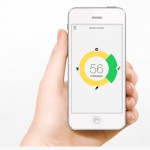 Nudge is a health and technology company that collects and sorts data from the most popular health and fitness apps on the market. The HIPAA- compliant company was founded in 2012, and has seen great success in over 120 countries. Nudge recently released its second product, Nudge Coach, a tool that analyzes consumers' wearable data for health and fitness professionals.
Nudge is a health and technology company that collects and sorts data from the most popular health and fitness apps on the market. The HIPAA- compliant company was founded in 2012, and has seen great success in over 120 countries. Nudge recently released its second product, Nudge Coach, a tool that analyzes consumers' wearable data for health and fitness professionals. -

Microsoft OneDrive is now the place for your photos
Publié: janvier 28, 2015, 8:22pm CET par Wayne Williams
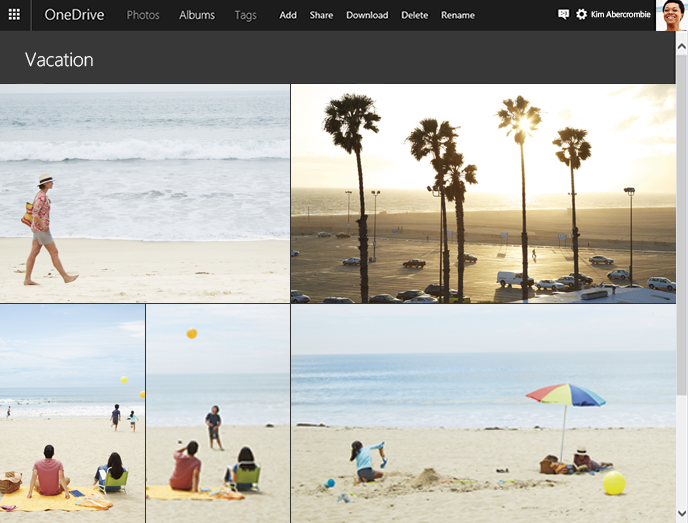
Microsoft wants its cloud storage service to be the best place for all of your photos, and so is debuting new ways to import, organize, find, improve, and share them.
According to Douglas Pearce, OneDrive’s Group Program Manager, major updates coming over the next couple of weeks include: "the ability for customers to curate photos from their phone, desktop and inbox quickly and simply; a new feature that allows you to view, manage, and share photos with Albums; and finally, through a partnership with Bing, customers can now search for their files and photos in a new and exciting way!"
You can already automatically upload photos and videos to OneDrive using the relevant Android, iOS, or Windows Phone app, but over the next month Windows 7 and 8.x users will also be able to automatically import and upload photos from connected devices -- such as digital cameras, USB memory sticks and external hard drives. And if you take screenshots, those will be uploaded to OneDrive automatically too.
From today OneDrive gains an Albums feature to make it easier to view, manage, and share your snaps. Albums have larger photo thumbnails, and images arranged attractively edge to edge, like a collage. And that’s not all. As Douglas Pearce explains, "Albums also let you bring photos and videos together from anywhere in your OneDrive. You don’t need to copy files from other folders. That means you can easily create an album using photos from your phone in your camera roll folder, your camera in your 'European Vacation 2012' folder, or from your email, with the photos you saved to your attachments folder. And even more, you can also add to your albums after they’ve been created and shared".
Albums is available from today on the web and the OneDrive iOS app. It will be followed shortly by Android and Windows Phone (Microsoft once again prioritizing iOS over its own mobile platform, which will annoy the Windows Phone faithful, but is the smart business choice). Users will also be able to receive Weekend Recap emails -- these contain sample photos that you took over the weekend, ready for sharing with friends.
Finding files in OneDrive is getting a boost too thanks to a close partnership with Bing. Users will be able to find Office documents and PDFs by searching for text inside them, and track down images based on time, location, and even text recorded in your photos (street signs, for example, or menus). In addition you can search for photos based on tags you’ve added yourself, or which Microsoft has automatically generated.
This is great news for photographers, although the 30GB you get for storage (if you turn on the camera backup) looks rather stingy compared with the 1TB Flickr offers for free. Maybe if Microsoft is really serious about appealing to photographers it will up the quota at some point in the future.
-

Get Cortana working in Windows 10 in the UK, and other non-US countries
Publié: janvier 26, 2015, 5:03pm CET par Wayne Williams

One of the biggest new features in the latest build of Windows 10 is Cortana. Microsoft is bringing its virtual assistant to the desktop, and if you install Build 9926 you can see what she’s capable of right now. Well, you can if you’re in the US at least.
If you live outside of America, in the UK for example, if you summon Cortana you’ll be told she’s "not available to help in your region", which is a bit rubbish. Fortunately, there are ways around this silly restriction.
All you need to do is switch regions. Click the Start button and go to Settings. Click on Time & Language, then click on Region & Language, and set your Country or Region to United States. Change the language to English (United States).
Now when you click on Cortana she’ll be happy to help. Sign in with your Microsoft account if you haven’t already.
Tell Cortana what you’d like her to call you, and listen to how she says your name. If it’s not right, you can tell Cortana this and speak your name correctly into the microphone. Once that’s set up, you’re ready to start using the feature.
You can type something into the search box, or click the microphone icon to ask a question. When summoned Cortana will present you with the news and weather and you can customize this by clicking the three dots to the right of each section.
To customize Cortana's abilities, click the hamburger button at the top left. Go to Settings. This is where you can turn the assistant on or off, change your name, and enable the "Hey Cortana" feature. You can manage Search, including General Cortana & Search Settings, from here too.
-

Unlock Windows 10's hidden secrets
Publié: janvier 26, 2015, 3:58pm CET par Wayne Williams
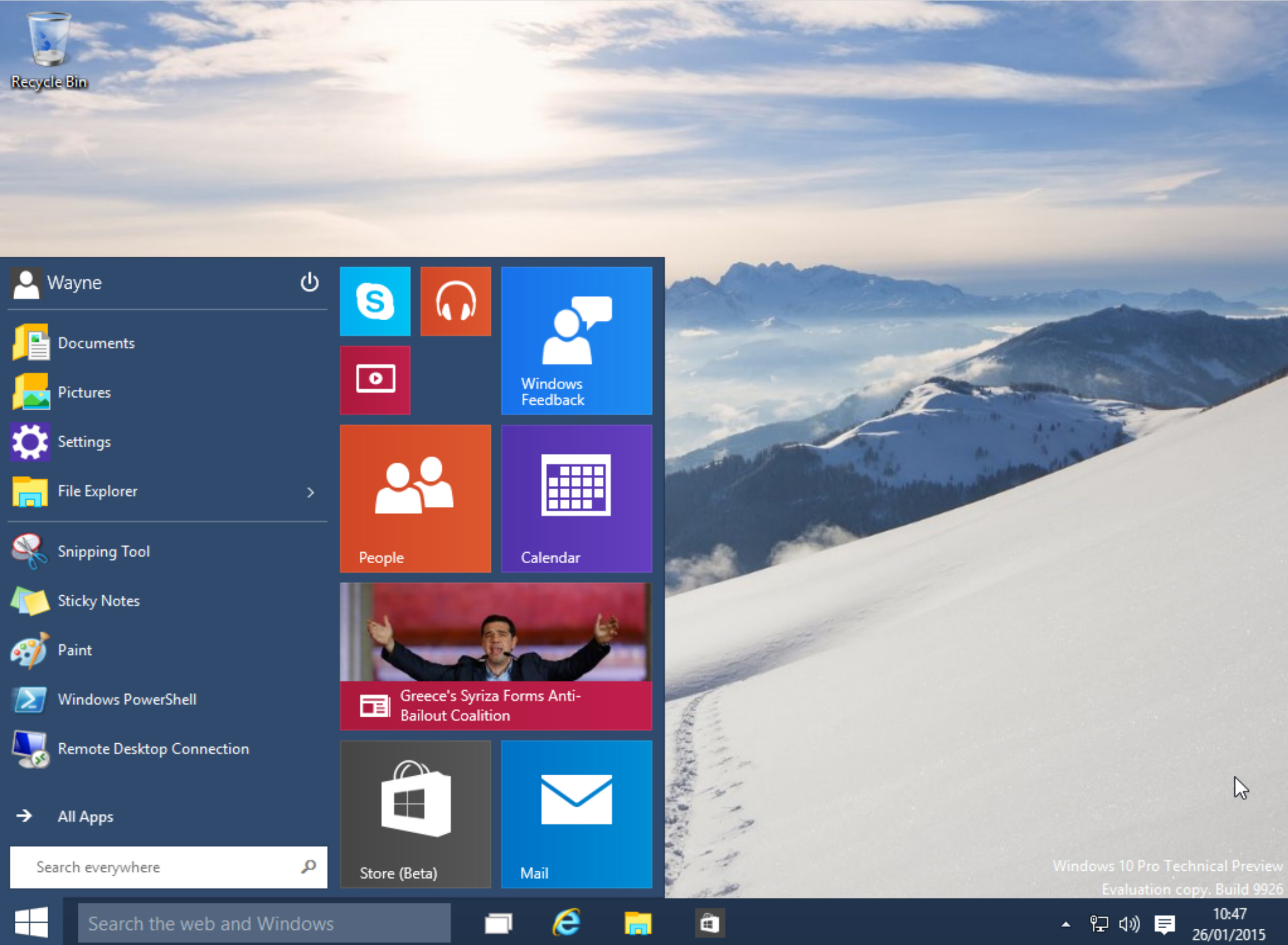
Microsoft released Build 9926 of the Windows 10 Technical Preview on Friday, and so far we’re liking what we see. There are a few issues with it, naturally, but it’s definitely a giant leap in the right direction (for the most part anyway).
There are several hidden features available, but not activated, in this new build, which are well worth exploring and so we’ve put together this handy guide explaining how to get them all working.
Firstly, there’s the redesigned system tray clock and calendar. My colleague Mark Wilson explained how to get this up and running in his Windows 10 hands on. The process is easy enough, you just need to open the registry editor, navigate to HKEY_LOCAL_MACHINE\Software\Microsoft\ Windows\CurrentVersion\ImmersiveShell and create a new DWORD (32-bit) value called "UseWin32TrayClockExperience".
There’s also a hidden logon screen you can activate by navigating to HKEY_LOCAL_MACHINE\ SOFTWARE\Microsoft\Windows\CurrentVersion\ Authentication\LogonUI\TestHooks. Double-click "Threshold" and change the value to "1". Changing it back to "0" will undo the switch.
The new build makes big changes to the Start menu with the introduction of the Continuum mode. If you prefer the way the old menu worked in the previous builds, you can switch back to that style with another registry tweak. Navigate to HKEY_CURRENT_USER\Software\Microsoft>Windows\CurrentVersion\Explorer\Advanced, create a new DWORD (32-bit) value called "EnableXamlStartMenu" then restart Explorer.
File Explorer can open with one of two views -- "This PC" or "Quick Access". The former shows your drives and library folders, while the latter displays frequent folders and recent files. Quick Access is the default but you can change this by opening File Explorer Options, selecting the General tab, and choosing "This PC" next to "Open File Explorer to". You can also perform a simple registry tweak. Navigate to HKEY_CURRENT_USER\Software\Microsoft\Windows\CurrentVersion\Explorer\Advanced and change the "LaunchTo" DWORD value to "1" (for This PC) or 2 (for Quick Access).
Cortana is now built into the desktop and resides on the taskbar. You can control her using your voice (provided you have a microphone plugged in) by clicking on the microphone button, but there’s also a hands free "Hey Cortana" function. This isn’t turned on by default, but is easily activated. Click on the Cortana icon on the taskbar and then click the hamburger button at the top left and select Settings. Turn "Let Cortana respond when you say 'Hey Cortana'" to on.
Finally, the search bar on the taskbar takes up a lot of space, but is easily disabled. Just click the taskbar, go to Search select “Disabled”. You can just display the search icon if you prefer.
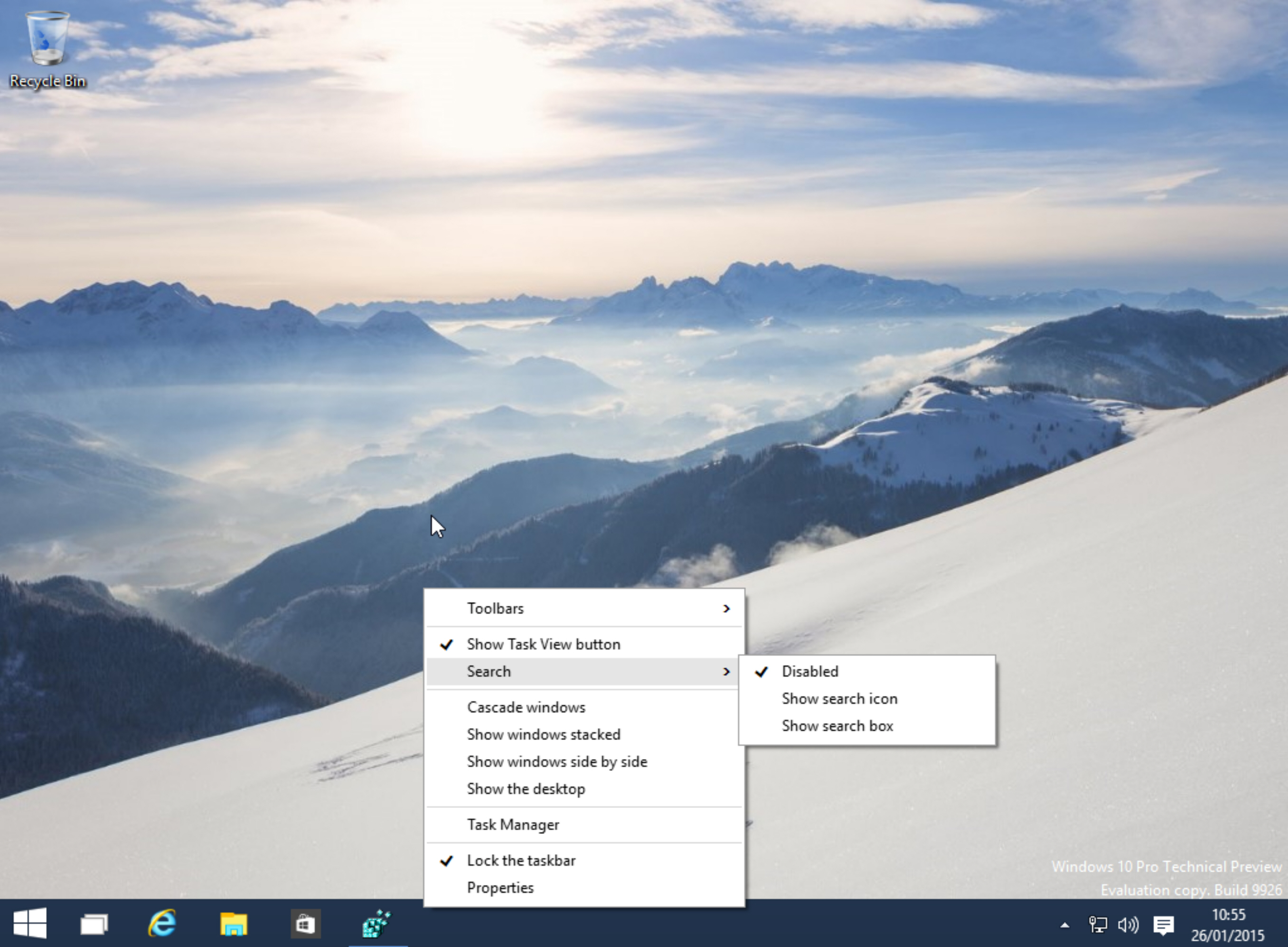
Have you uncovered any hidden secrets in this new build? If so, share them in the comments below.
-

How to install Windows 10 January Build (9926) on Oracle VirtualBox
Publié: janvier 23, 2015, 10:03pm CET par Wayne Williams
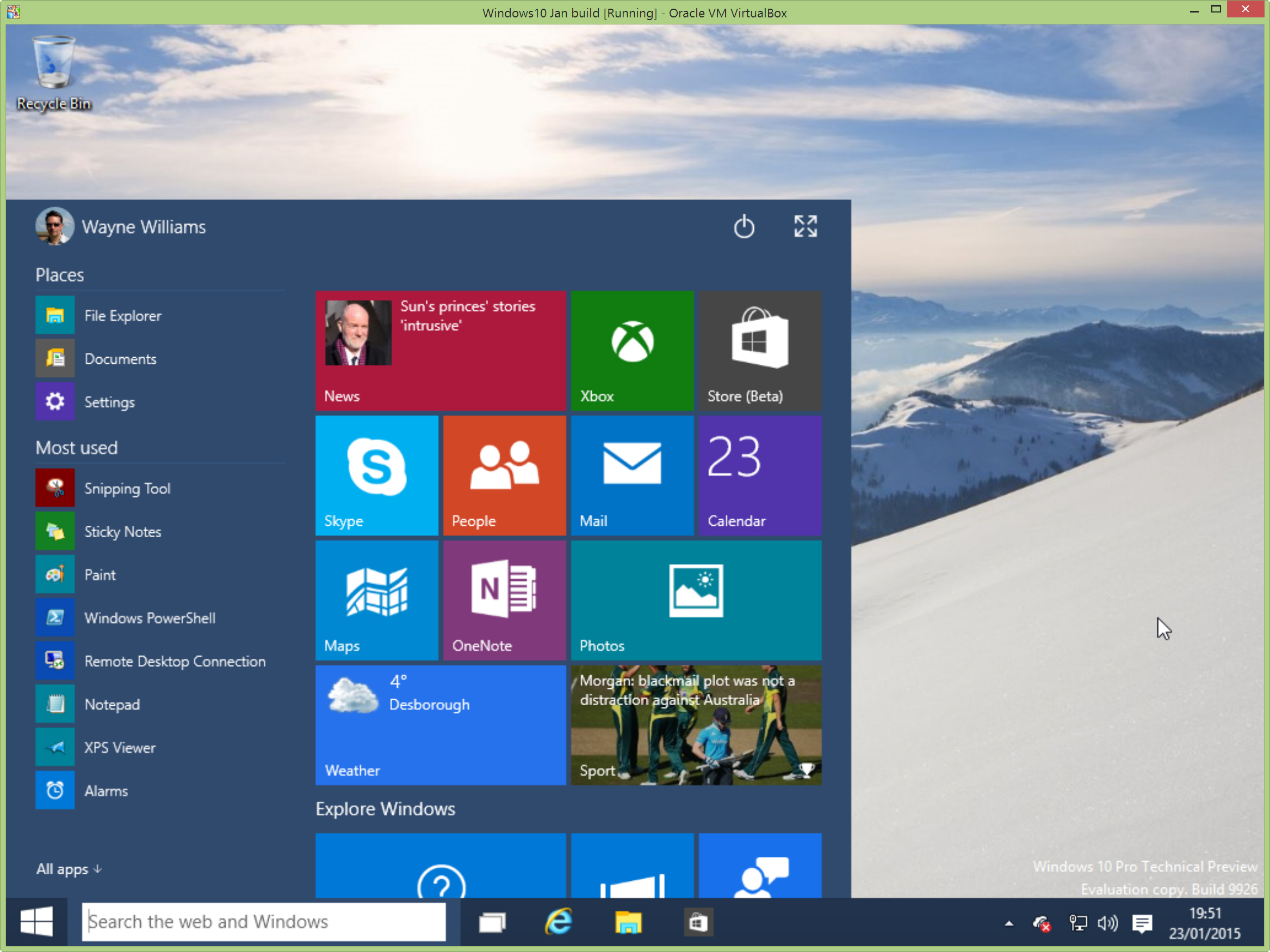
Microsoft has just released the latest build of Windows 10. New features and changes include a more polished Start menu, Cortana on the desktop, new Settings, Photos, Maps and Xbox apps, and the ability to connect to wireless audio and video. As with the previous builds, this is a very early version of the OS, so you wouldn’t be advised to run it as your main operating system, and while you could set it to dual boot, running it in a virtualized environment is probably a more sensible idea.
The process is very simple -- all you need is a copy of Oracle VM VirtualBox and a Windows 10 Technical Preview ISO. Microsoft updated the latter earlier today.
To set up Windows 10 in VirtualBox, launch the software and click New in the Manager window. In the Create Virtual Machine dialog box enter "Windows 10" as the name of the operating system. Select Windows 8.1 as the version. (Choose Windows 8.1 (64bit) if you have a 64-bit ISO) Hit Next.
Set the Memory Size. The recommended figure should be fine. On the following screen choose to "Create a virtual hard drive now" and click Create. Accept VDI (VirtualBox Disk Image) as the hard drive file type. You’ll be asked if you want the new virtual hard drive to be dynamically altered (it will resize as required) or a fixed size. The latter option is faster, so select that.
Click Create and VirtualBox will begin building the drive.
When done, click the Start button in the Manager. In the "Select start-up disk" window, click the folder icon and navigate to the Windows 10 ISO.

Click Start and Windows 10 should begin to load. Select your language settings, then click the "Install now" button. Accept the license terms. Choose the "Custom: Install Windows only (advanced)" option.
Click Next, and the installation process will begin, rebooting as necessary.
When it’s done, you’ll be given the option of using express settings, or customizing things. It’s easiest to select the first one. Sign in with your Microsoft account (entering a code as required), and then finalize everything else.
Windows 10 will start and the first things you’ll see are your desktop and the taskbar with a "Search the web and Windows" search box. This is where you can also access Cortana, although "she's" not available if you live outside the US (she's certainly not available in the UK). Next to this is the button for Task View, then there's buttons for Internet Explorer (no Spartan in this build). File Explorer and the Windows Store Beta. Hit the Start button to view the improved Start menu. You can switch to full screen mode here.
If you want to resize the OS window, click View in VirtualBox and select Fullscreen or Scaled Mode.
The simplest way to shut down Windows 10 when you no longer need it is to click the X in top right corner of VirtualBox and select "Power off the machine".
If VirtualBox encounters errors and fails to install Windows 10, take a look at the troubleshooting suggestions here.
-

Windows 10 Build 9926 out NOW -- New features include Cortana, Xbox app, improved Start menu and more
Publié: janvier 23, 2015, 8:11pm CET par Wayne Williams
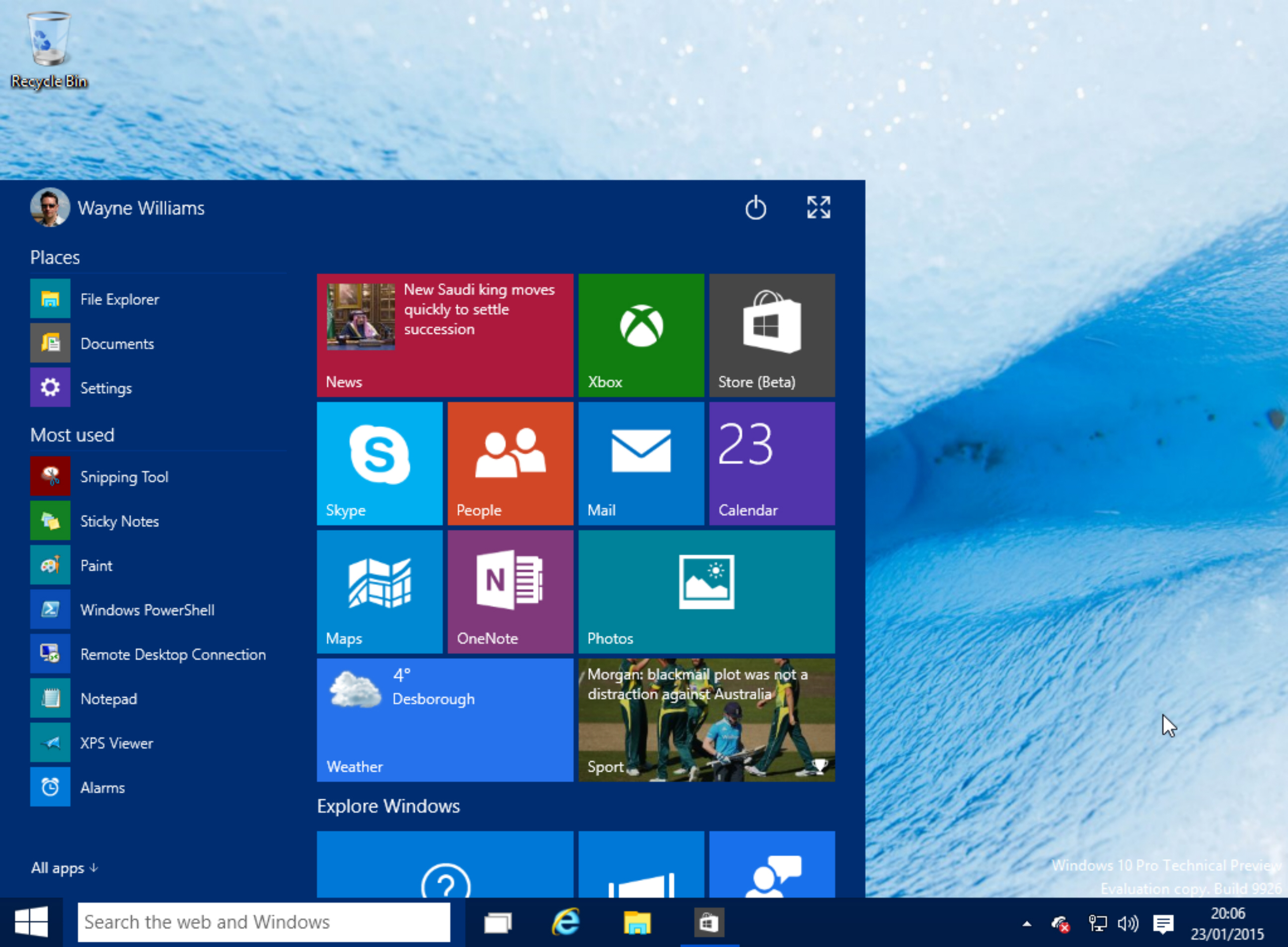
Talk about unexpected. After showing off Windows 10 on Wednesday, Microsoft disappointed a legion of dedicated testers by announcing the next build wouldn’t be available until next week.
Turns out that’s not the case at all -- it’s available to download, and start using right now. The "January Build" as it’s being called (Build 9926 for those who like version numbers), is being pushed out to Windows Insiders on both the "Fast" and "Slow" rings, and while not everything demoed at the Windows 10 briefing is available in the new build, it does come with Cortana on the desktop, a more polished Start menu, a new Settings app, and the ability to connect to wireless audio and video. There’s also new Photos and Maps apps, a new Xbox app, and Windows Store Beta.
We will of course have a much more detailed look at the new build in due course, but first let’s look at how to get it.
You need to be a Windows Insider to install the January Build. If you aren’t currently an Insider you can sign up here. The easiest way to get it is through Windows Update. You can wait for the new build to be pushed to you, or force an update by going to "PC Settings" > "Update and recovery" > "Preview builds". Click "Check now" to download the new build. If it doesn’t show up immediately, leave it a short while and try again. The update is just rolling out now. If you can't wait that long, you can download the ISO. Microsoft has just updated these now.
This is a full build, so will be installed as if you were installing Windows 10 for the first time. It may take a little while to complete, depending on your setup.
While you’re waiting, you can read about the changes and new features here (including known problems) and view these freshly captured screenshots.

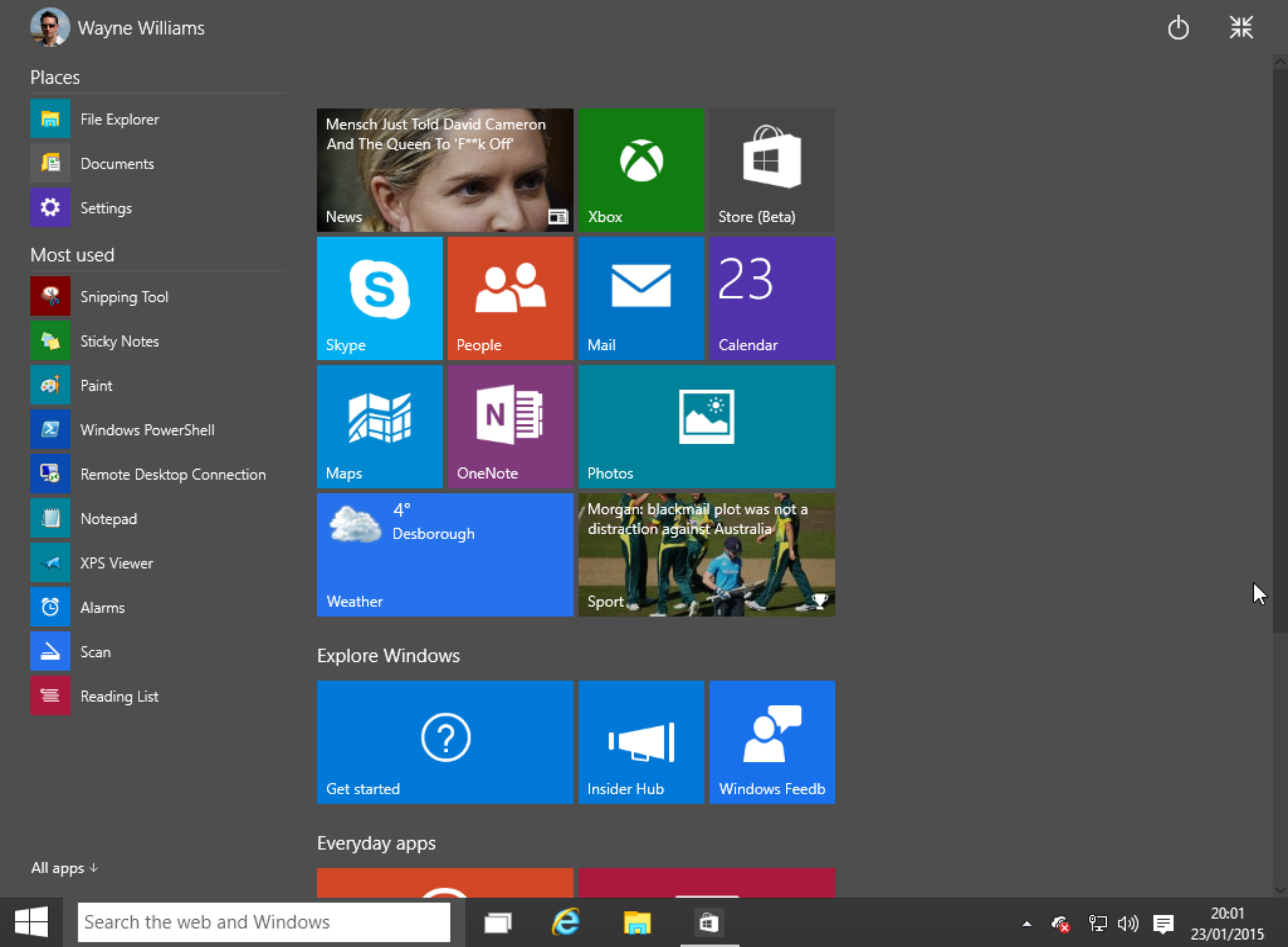
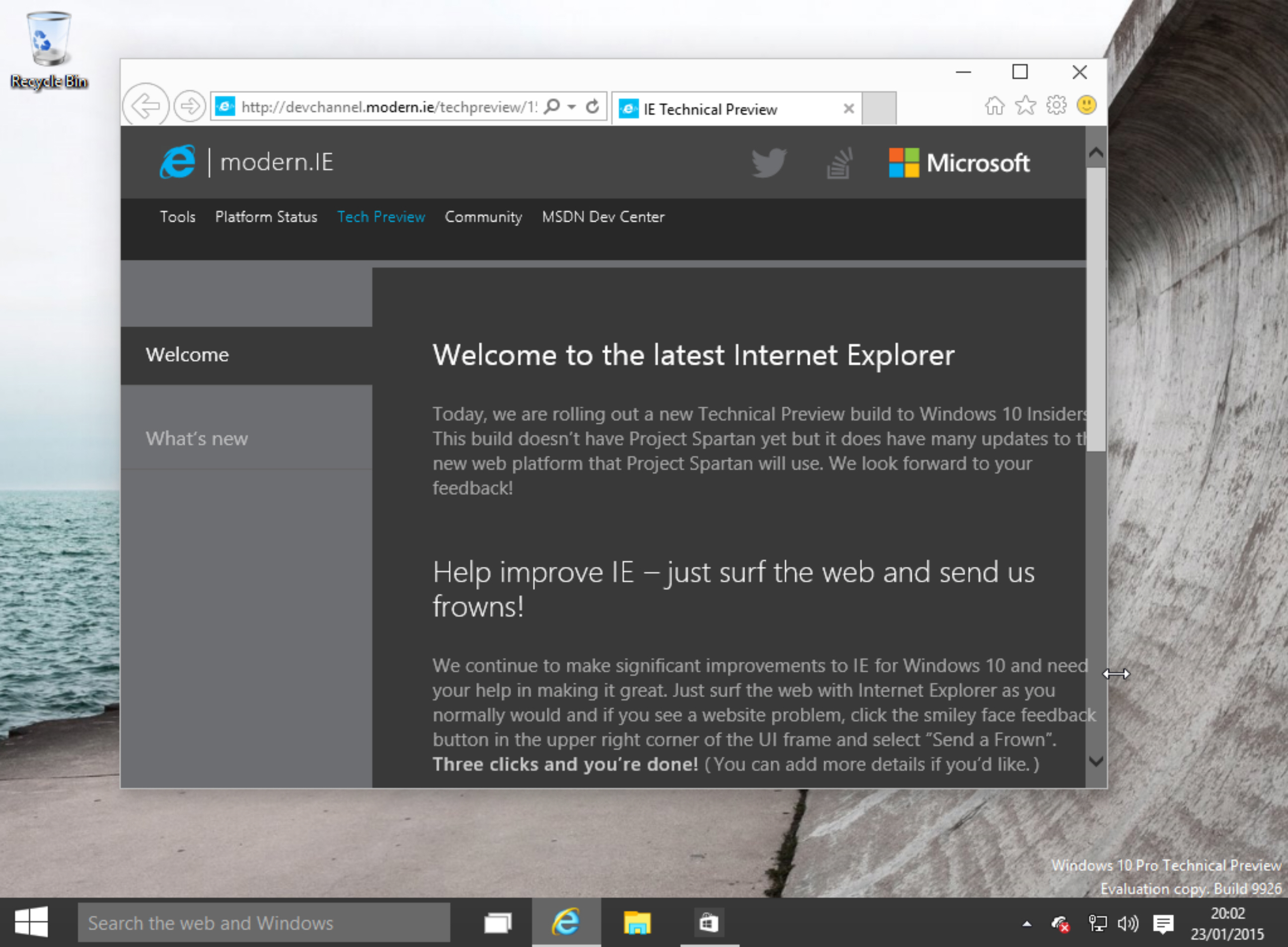
There's also a short video to enjoy.
-

The Windows 10 presentation gets an A -- for Apple
Publié: janvier 22, 2015, 5:22pm CET par Wayne Williams
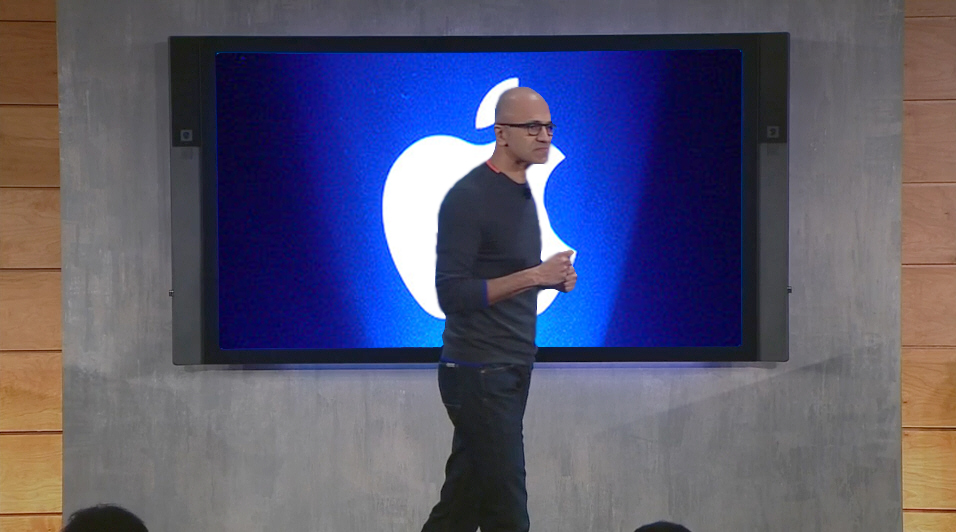
Yesterday’s Windows 10 briefing was weird. I mean that in a good way. Microsoft went all Apple on us, aping much of the style and presentation of its rival, right down to the "one more thing" which turned out to be a crazy holographic nerd helmet that was nowhere near finished and can’t yet do most of the things claimed for it. But has potential.
In the aftermath of the presentation tech writers began asking questions like "When did Apple become the boring one?", and that would have raised a smile or two at Redmond. Microsoft needed to shake off its reputation of a firm which makes dull, or flawed "me too" products, and for the main I think it succeeded.
The company seems to be trying to transition into a firm you can like. "The People’s Apple" if you will. The old Apple trick of repeating a word -- "love" in Microsoft’s case yesterday ("we want you to love Windows 10", "we want people to move from needing Windows, to choosing Windows, to loving Windows") -- to drum it into the minds of those in attendance or viewing online, was handled well, and with a subtlety I liked.
It wasn’t a perfect presentation though. At two and a half hours it dragged on, with occasional periods of boredom interrupted by annoying long periods of buffering.
The gathered audience -- writers hunched over screens -- clearly hadn’t been whipped up into a frenzy as the excitement you feel from an Apple event wasn’t noticeable here.
When Terry Myerson revealed Windows 10 would be a free upgrade to users of Windows 8.1, the room was totally silent, and stayed silent when he added Windows Phone 8.1 to the list (the only sound was a solitary comedy cough). He then played the trump card and announced Windows 7 customers would also be getting a free upgrade only to be greeted with more silence, followed, finally, by some sporadic clapping and a lone whistle. It was like watching a comedian dying on stage.
Similarly, when Satya Nadella was announced, there was some polite clapping and that was it. This is the frigging CEO of Microsoft. Give him a rockstar welcome! Except… you can see where they were coming from. Steve Ballmer would have bounded on stage, and torn the roof off. Satya Nadella did his best to drain the energy from the room.
Satya’s doing a great job of turning Microsoft around, and he’s given the company a modernity, drive and strategy that has been missing for a long time. But he’s not exactly a front man.
When it was his turn on stage he gave a long, meandering speech in which he spoke a lot of words, but said very little of substance. He waffled, and he rambled, and used buzzwords and phrases but if Microsoft had cut out his appearance on stage ("Sorry, Satya, we’re out of time"), we would have been none the worse off.
Satya Nadella is no Steve Jobs, he’s not even a Tim Cook, but so what? Failing to inspire on stage doesn’t matter if you can inspire in the work place, which -- with the aid of a team of good people -- he seems to be able to. I just wish he would come up with a better slogan. “Mobile first, cloud first” is rubbish. So what are you saying? It’s a draw? They’re both equally important? There are no winners? I don’t get it.
Satya Nadella is never going to be exciting, but Microsoft’s future products could be.
The holographic nerd helmet took up a big chunk of the running time, and some people have described it as Microsoft’s iPhone moment. But it isn’t. The device is nowhere near finished, and you won’t be able to buy it this year, or maybe even next, despite what you may be fooled into believing.
Microsoft was keen to stress it had been working on the HoloLens for years and years, "hidden in plain sight" in the visitors center, to avoid the accusation it had thrown together a quick prototype, which is what the demo version looked like. I’d love to know how much development time was actually spent on it across the years. I expect not much in the beginning. I would also have loved to see Steve Ballmer dancing around with it on his head, but sadly that’s not to be.
Overall though, I enjoyed the Microsoft presentation. It followed the Apple playbook closely -- start with big numbers, give the audience what they’re expecting, and something impressive as a bonus ("Windows 10 will be free!") and then finish with an innovation. Apple showed off the Watch, which isn’t ready, and Microsoft gave us the HoloLens, which isn’t ready.
I said before Windows 8 launched that Microsoft wants to be Apple, and yesterday that seemed truer than ever. There are exciting times ahead for Microsoft, it no doubt has exciting news, and exiting products to communicate, but it still needs to learn the big Apple trick Steve Jobs was the master of -- making great products seem even more exciting and desirable than they are.
-

Catch up on the Windows 10 briefing in seven and a half minutes
Publié: janvier 21, 2015, 9:56pm CET par Wayne Williams
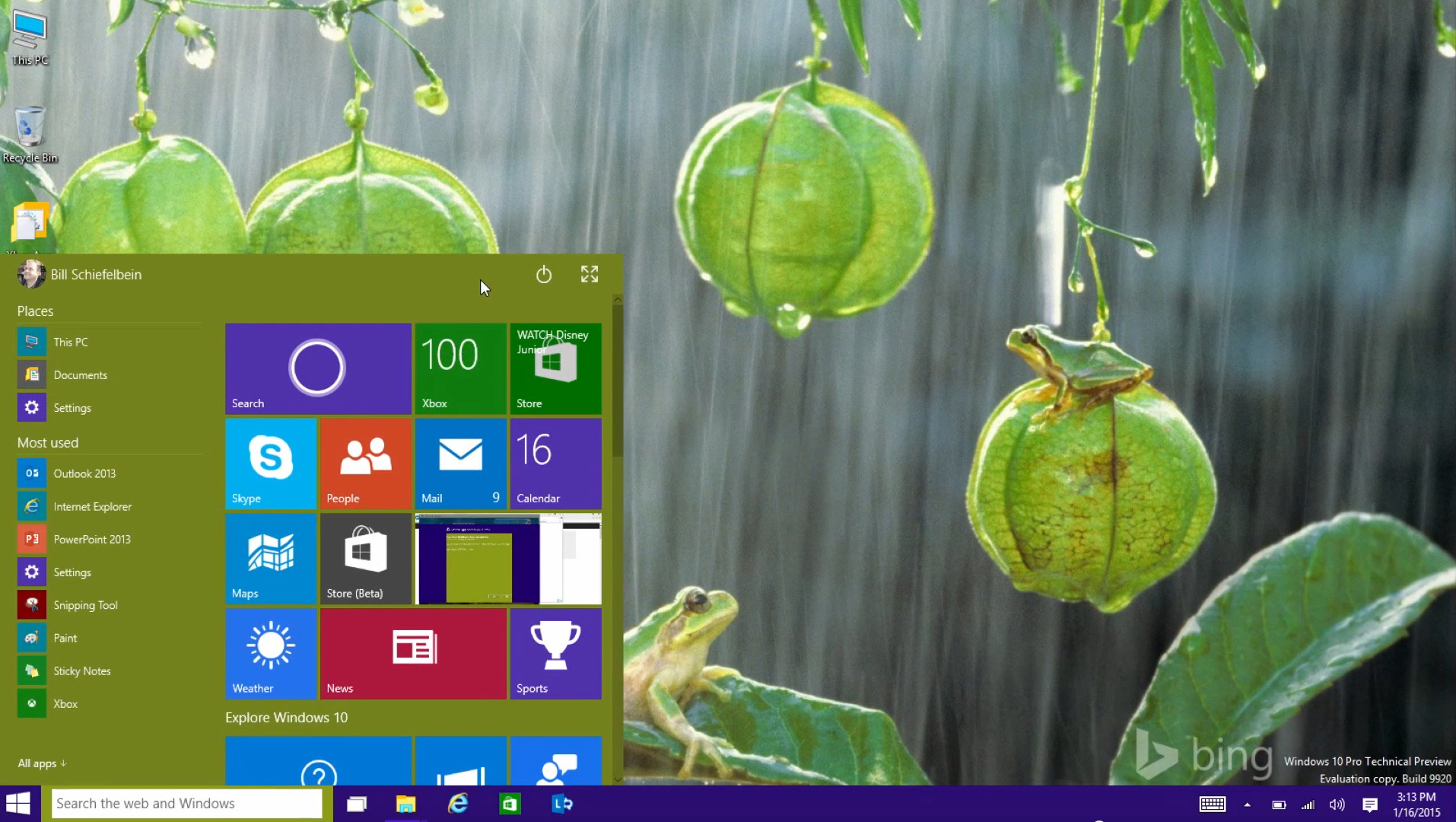
The Windows 10 briefing offered up a lot of interesting things, but with a running time of just under two and a half hours, you are going to need to really, really love Microsoft and Windows to sit through it all.
Fortunately, you don’t need to commit yourself to the full briefing as Microsoft has rolled out a 7.25 minute video covering the highlights.
The video starts with Joe Belfiore discussing how Windows 10 is evolving the way the PC works with personal computing elements like writing on web pages and speaking to Cortana.
He talks about the free upgrade -- "the core idea here is to get everyone on to the latest and greatest, so they will love Windows, and they’ll love their computing experience". If you sit through enough Apple presentations you’ll learn that there is usually a keyword pushed repeatedly like a mantra. In Microsoft's briefing, it was "love" and the idea of loving Windows 10. As opposed to bloody hating Windows 8, presumably.
In the video Belfiore believes making the OS free in the first year will strengthen the Windows ecosystem, resulting in more apps being developed and more people becoming engaged in creating content. Microsoft certainly needs to do something in this area, and this might just be what’s required to give the ecosystem the kickstart it so desperately needs.
The video also covers Cortana’s integration, Universal Apps (which run across PCs, phones, tablets and eventually Xbox), and the new Spartan web browser. In addition it covers the new Photos app, and gaming on Windows 10 ("the Xbox experience is coming to Windows").
What's your view of what was revealed? Are you excited for Windows 10?
-

Windows 10 will be free for Windows 7, Windows 8.1 and Windows Phone 8.1 users… but there's a catch
Publié: janvier 21, 2015, 7:01pm CET par Wayne Williams
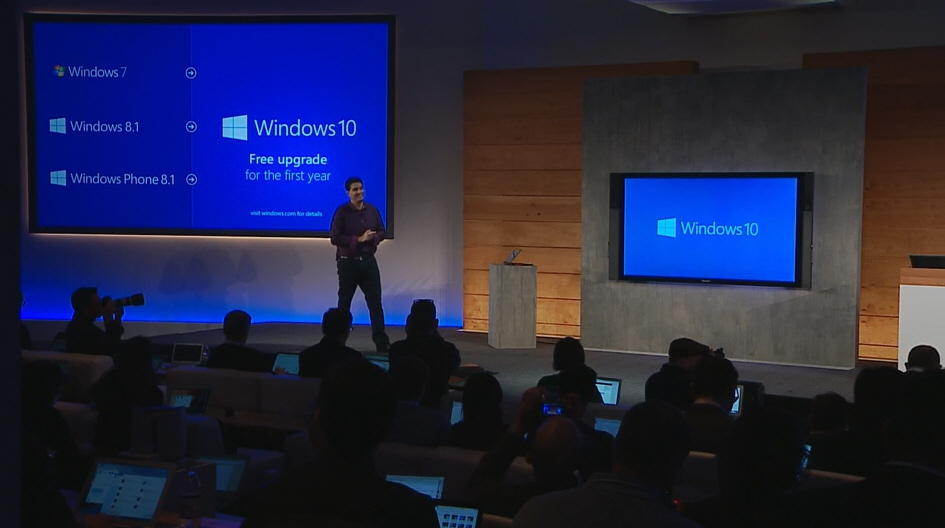
So the Windows 10 briefing is well underway, and Microsoft has already dropped a bombshell, although it’s one that many people will have been expecting.
If you have Windows 7, Windows 8.1 or Windows Phone you will be able to upgrade to Windows 10 for free. That’s right, it won’t cost you a single penny. And who doesn’t love free? Now the bad news… it's only free if you upgrade in the first year. What happens after that year is up isn't entirely clear.
Microsoft says it now views Windows as a service, so there's every possibility it will be looking to bill people for a yearly subscription as it does with Office 365. Microsoft hasn’t yet gone into the exact details yet. Or cost. Just shouted "Free!" and moved on.
"Today really is a monumental day for Windows," Terry Myerson, Microsoft's Executive Vice President of Operating Systems, announces. "Windows as a Service is great for consumers, it's great for developers and it’s great for the security of our enterprise customers. Windows 10 is so much more than the latest version of Windows. Windows 10 changes the rules of game and redefines the relationship between us and our customers". You can say that again.
Making Windows Free in this way will definitely help launch Windows 10 with a bang, and avoid the embarrassingly low market share experienced by its predecessor. Removing the price -- for the first year -- will also remove the barrier to entry, allowing anyone to try the OS. Smart move Microsoft, smart move. Now we just need to know what’s going to happen price-wise after the first year…
-

Windows 10 will be free for Windows 7, Windows 8.1 and Windows Phone 8.1 users… but there's a catch [Updated]
Publié: janvier 21, 2015, 7:01pm CET par Wayne Williams

So the Windows 10 briefing is well underway, and Microsoft has already dropped a bombshell, although it’s one that many people will have been expecting.
If you have Windows 7, Windows 8.1 or Windows Phone 8.1 you will be able to upgrade to Windows 10 for free. That’s right, it won’t cost you a single penny. And who doesn’t love free? Now the bad news… it's only free if you upgrade in the first year.
Microsoft says it now views Windows as a service, so there's the possibility it will be looking to bill people for a yearly subscription as it does with Office 365. Microsoft hasn’t gone into the exact details yet. Or cost. Just shouted "Free!" and moved on. It's possible it will be entirely free for anyone upgrading in the first year and remain that way. Either way, I've asked Microsoft for clarification.
"Today really is a monumental day for Windows," Terry Myerson, Microsoft's Executive Vice President of Operating Systems, announces. "Windows as a Service is great for consumers, it's great for developers and it’s great for the security of our enterprise customers. Windows 10 is so much more than the latest version of Windows. Windows 10 changes the rules of game and redefines the relationship between us and our customers". You can say that again.
Making Windows free in this way will definitely help launch Windows 10 with a bang, and avoid the embarrassingly low market share experienced by its predecessor. Removing the price -- for upgraders in the first year -- will also remove the barrier to entry, allowing anyone to try the OS. Smart move Microsoft, smart move. Now we just need to know what’s going to happen price-wise after the first year…
Update. In a blog post Terry Myerson clarifies:
We announced that a free upgrade for Windows 10 will be made available to customers running Windows 7, Windows 8.1, and Windows Phone 8.1 who upgrade in the first year after launch.
This is more than a one-time upgrade: once a Windows device is upgraded to Windows 10, we will continue to keep it current for the supported lifetime of the device -- at no additional charge. With Windows 10, the experience will evolve and get even better over time. We’ll deliver new features when they’re ready, not waiting for the next major release. We think of Windows as a Service -- in fact, one could reasonably think of Windows in the next couple of years as one of the largest Internet services on the planet.
During the question and answer session that followed the briefing Satya Nadella admitted that they haven’t worked out Windows 10 pricing details yet.
Update 2. And for good measure, a Microsoft spokesman tells me:
We will offer a free upgrade to Windows 10 for qualified new or existing Windows 7, Windows 8.1 and Windows Phone 8.1 devices that upgrade in the first year! And even better: once a qualified Windows device is upgraded to Windows 10, we will continue to keep it up to date for the supported lifetime of the device, keeping it more secure, and introducing new features and functionality over time -- for no additional charge.
Update 3. And finally, if you're wondering what Microsoft means by "qualified":
It is our intent that most of these devices will qualify, but some hardware/software requirements apply and feature availability may vary by device. We will be sharing more information on the requirements and additional offer terms in the coming months.
-

Watch Microsoft's Windows 10 briefing here LIVE
Publié: janvier 21, 2015, 4:33pm CET par Wayne Williams
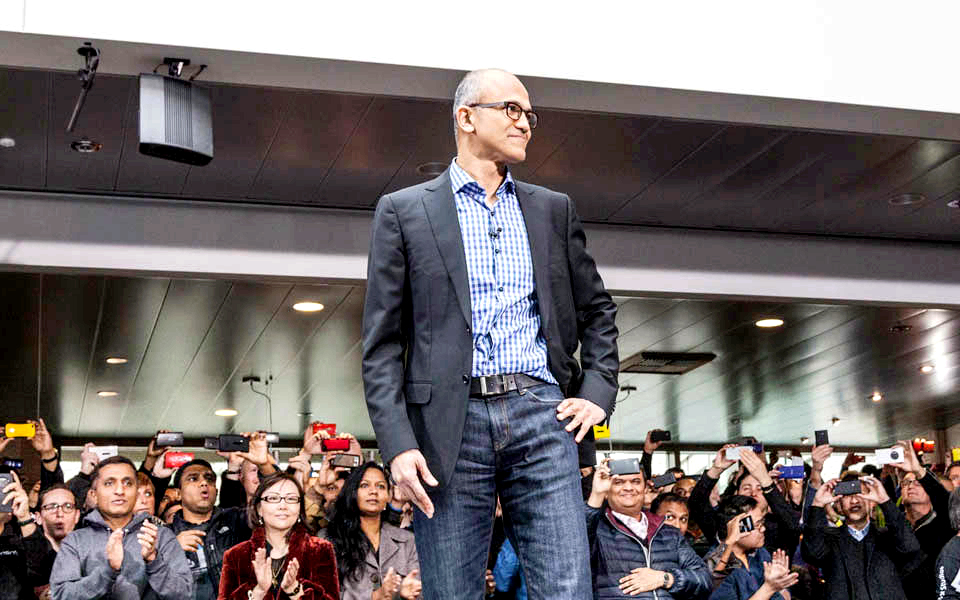
Microsoft didn’t livestream its Windows 10 reveal last September, mostly because it wasn’t a product launch as such, or even a presentation aimed at consumers (it was more just a name announcement and a quick run through of the features). The software giant will, however, be livestreaming today’s Windows 10 briefing.
Called "Windows 10: The Next Chapter", the event will include presentations from Terry Myerson, Joe Belfiore, Phil Spencer and Microsoft CEO Satya Nadella, and cover the consumer side of the new operating system. We’re also expecting to find out more about Windows 10 Mobile.
New features likely to be showcased include Microsoft’s voice assistant Cortana, an updated interface, and the Spartan web browser. There will hopefully be a surprise or two in store also.
The event starts at 9am PST/12pm EST/5pm GMT and the livestream will begin then also.
You’ll be able to tune into the briefing here as it happens, and Microsoft will be making an on-demand version of the event available shortly after proceedings conclude, which you’ll be able to watch at [microsoft.com] and also below.
Please feel free to share your thoughts on the presentation and the next build of Windows 10 in the comments below.
-

Snowden: iPhone has special software that gathers information on you
Publié: janvier 21, 2015, 1:15pm CET par Wayne Williams
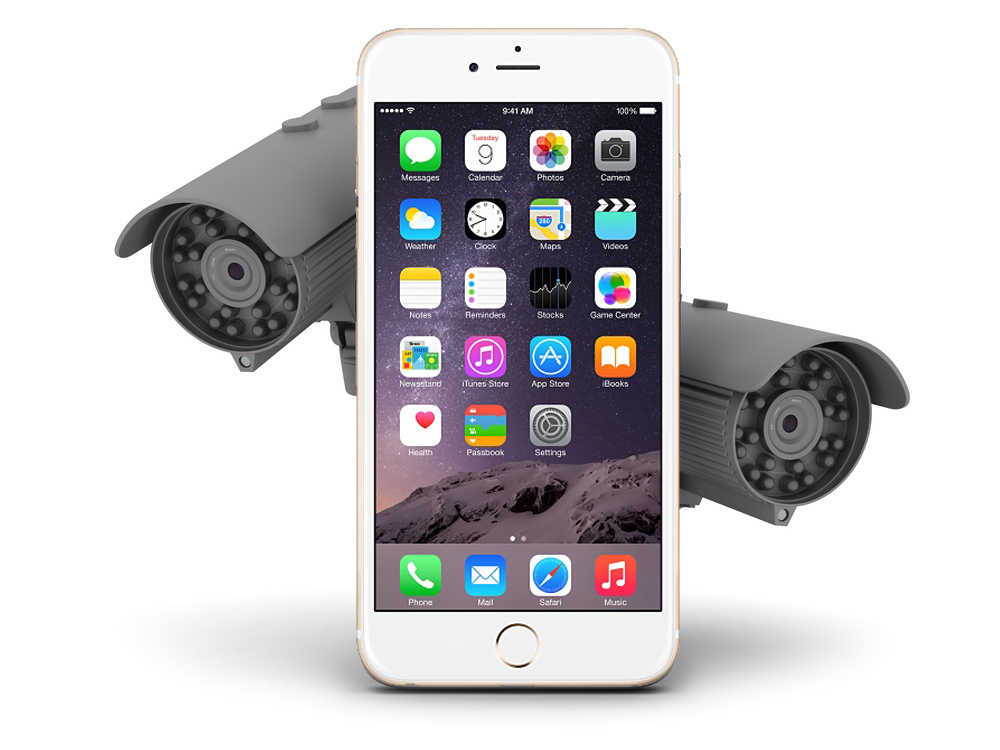
You have to take a little (sometimes a lot) of salt with some of the revelations made by Edward Snowden, but his latest claim is, on the surface at least, a damning one for Apple.
According to the NSA whistle-blower’s lawyer, the iPhone has special software installed which can be remotely activated, and used to keep tabs on your whereabouts. A spyPhone, if you will.
Speaking to Russian news agency RIA Novosti, lawyer Anatoly Kucherena said, "Edward never uses an iPhone, he’s got a simple phone. The iPhone has special software that can activate itself without the owner having to press a button and gather information about him, that’s why on security grounds he refused to have this phone".
Now this quote comes from Kucherena, rather than Snowden himself, so it’s difficult to know exactly what this "software" is. The iPhone does, like most smartphones, track your location and uses these details for various (non-nefarious) reasons. It even has a built-in feature which plots on a map where you -- or your phone at least -- has been. To view this, go to Settings, Privacy, Location Services and scroll down (marveling, as you do, at the number of apps which have access to your location), and tap System Services. Select Frequent Locations. That will show a list of towns and cities you’ve visited. Select one to view the addresses you’ve been to there. It’s eye opening stuff if you’ve never seen it before, but easily turned off if it bothers you.
Is this the software Kucherena is referring to? Or does Edward Snowden know, or think he knows, of additional tracking software built into Apple’s devices? It’s hard to say for certain. As an iPhone user I’m personally not worried in the slightest -- there’s no hidden spy software on the iPhone -- although if I was Edward Snowden I’d be using a dumb phone too.
Recently leaked NSA files from Snowden reveal that British spy agency GCHQ previously used the iPhone’s UDID (unique identifier) as a way to track owners. This is no longer a worry for paranoid users however, as the published files are dated November 2010 and Apple moved away from the UDID system to more privacy-friendly methods in March 2013.
Photo Credit: digieye /Shutterstock
-

Mouse-Box is a complete computer… in a mouse!
Publié: janvier 20, 2015, 2:12pm CET par Wayne Williams
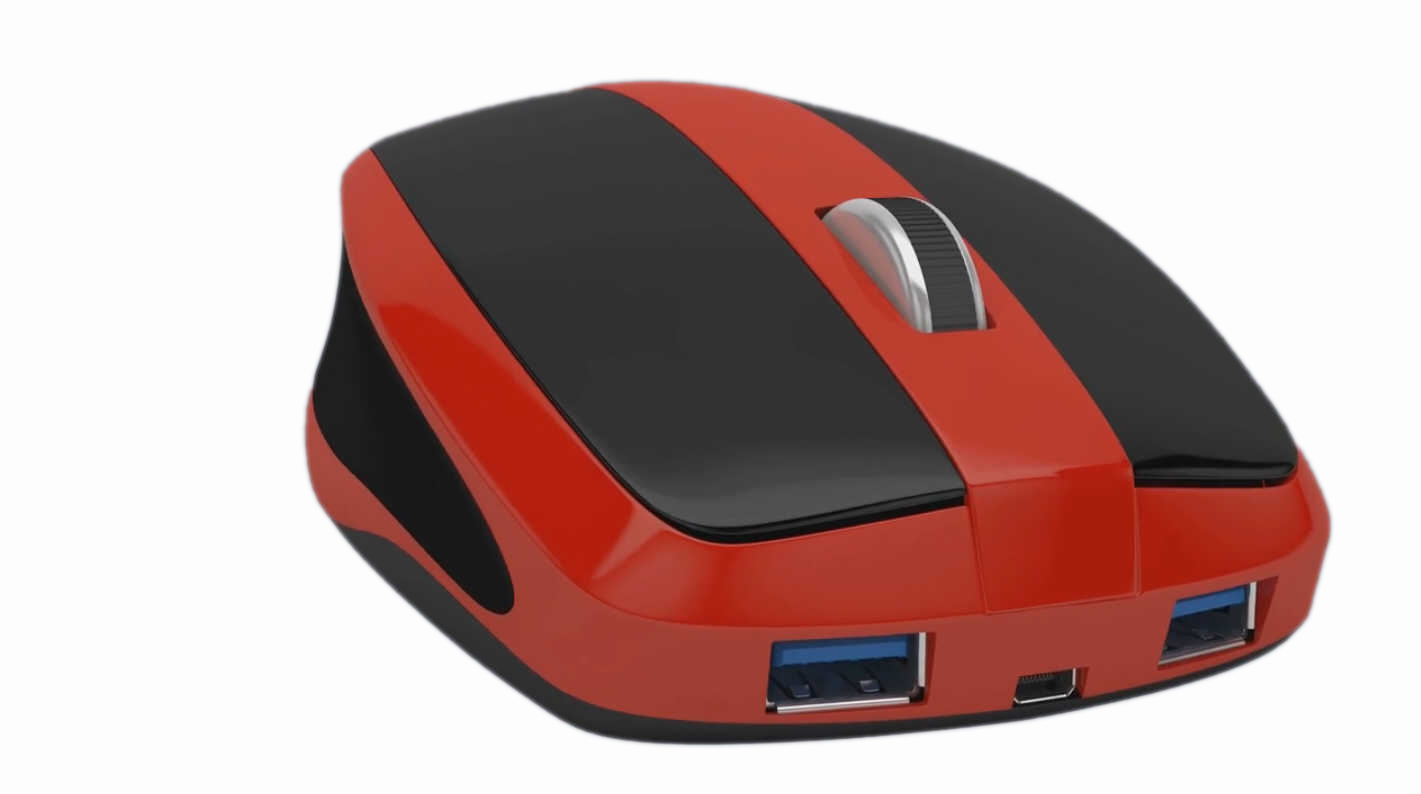
Small computers are proving very popular these days. As well as the likes of Raspberry Pi, there are Windows 8.1/Linux devices like Intel's Compute Stick on the way, and fans of Linux Mint can purchase the CompuLab MintBox Mini. Given the size of this new generation of diminutive device, it’s perhaps surprising that no one has (successfully) tried to squeeze a PC into a mouse before.
Well, now, finally they have. Mouse-Box aims to be a complete computer inside in a fully functioning pointing device. You’ll be able to use it with your normal PC, and then switch to the Mouse-Box computer with ease. You just need access to a screen and keyboard (you already have the mouse!)
Although Mouse-Box is a work in progress, there’s a functioning prototype with a 1.4 GHz quad-core ARM Cortex CPU, Micro-HDMI, Wi-Fi B/G/N and space for an optional battery. The Mouse-Box comes with an accelerometer, gyroscope, 2x USB 3.0 ports and 128 GB flash storage, plus you'll get additional cloud storage for your files.
Mouse-Box will charge wirelessly via an inductive charging pad that can be folded away in a box when not in use.
At the moment the Mouse-Box team are just asking for video shares to get the word out there, and hopefully find backers. It’s possible they may go the crowd funding route in the future also.
Either way, this is an interesting project and it will be interesting to see what happens with it.
-

Minecraft usernames and passwords leak online
Publié: janvier 19, 2015, 9:01pm CET par Wayne Williams
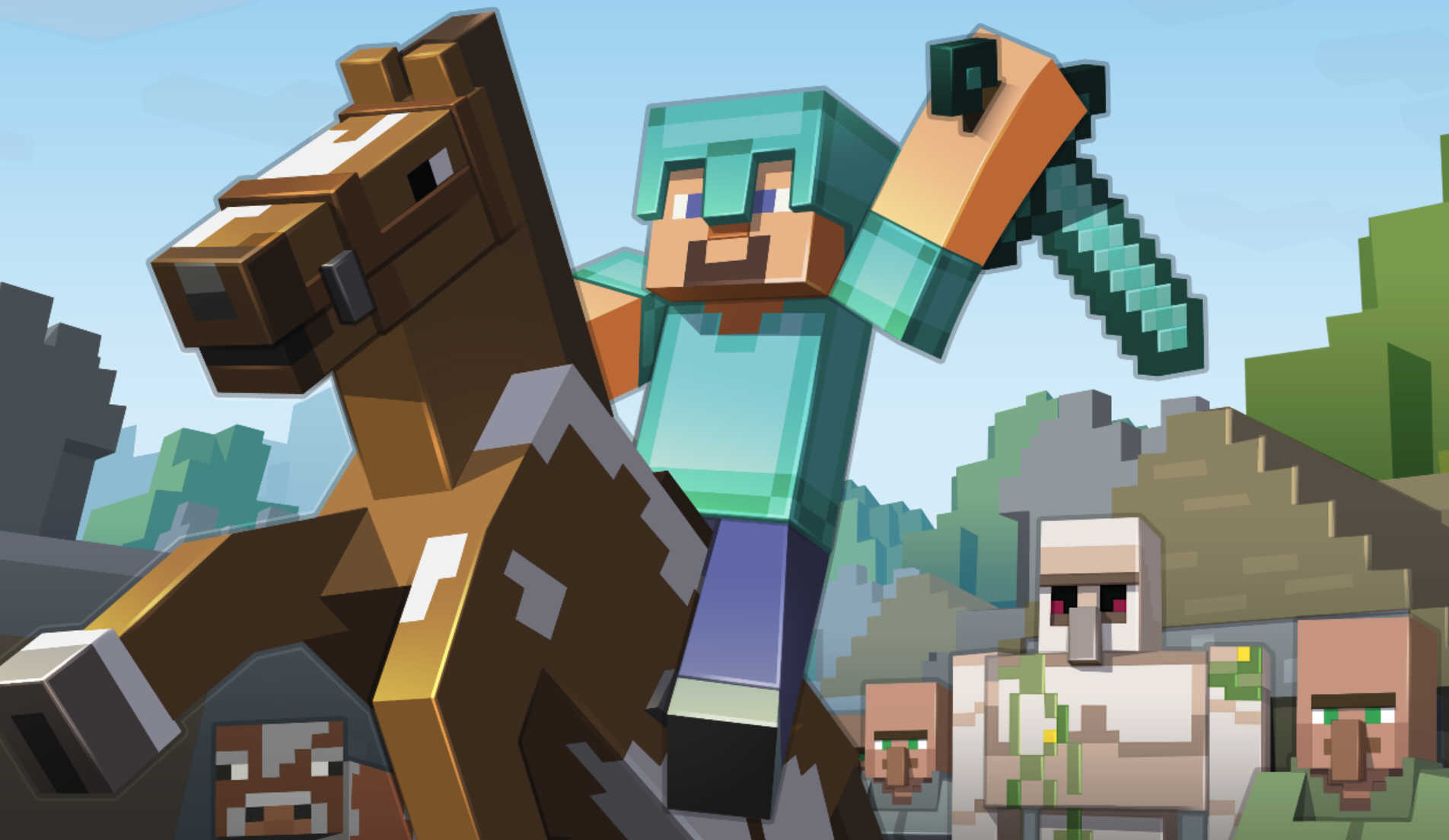
Minecraft is a phenomenon. The online game is incredibly popular with well over 100 million PC downloads to date. When Microsoft bought developer Mojang last September it had to shell out a cool $2.5 billion to do so.
So it’s perhaps no surprise that players of the game have been the target of hackers keen to get their hands on poorly guarded gaming credentials. Armed with a valid user name and password, anyone can log into a game, or download a full copy of Minecraft.
A plain text list of 1800+ valid Minecraft usernames and passwords have been published on Pastebin. There's no clue as to where the credentials originated, or if there are likely to be more to follow.
Security expert Graham Cluley speculates the cause could have been the result of "simple phishing attacks, keylogging malware stealing players’ details as they log into the game, or even a security breach at Minecraft itself".
There has been no word of a breach on Minecraft’s homepage, but don’t rush to discount that quite yet. Breaches often take time to become public as the hacked companies usually aren’t too sure what’s happened themselves.
The chances are this is just a small scale incident, but I’ll update this story when more becomes known.
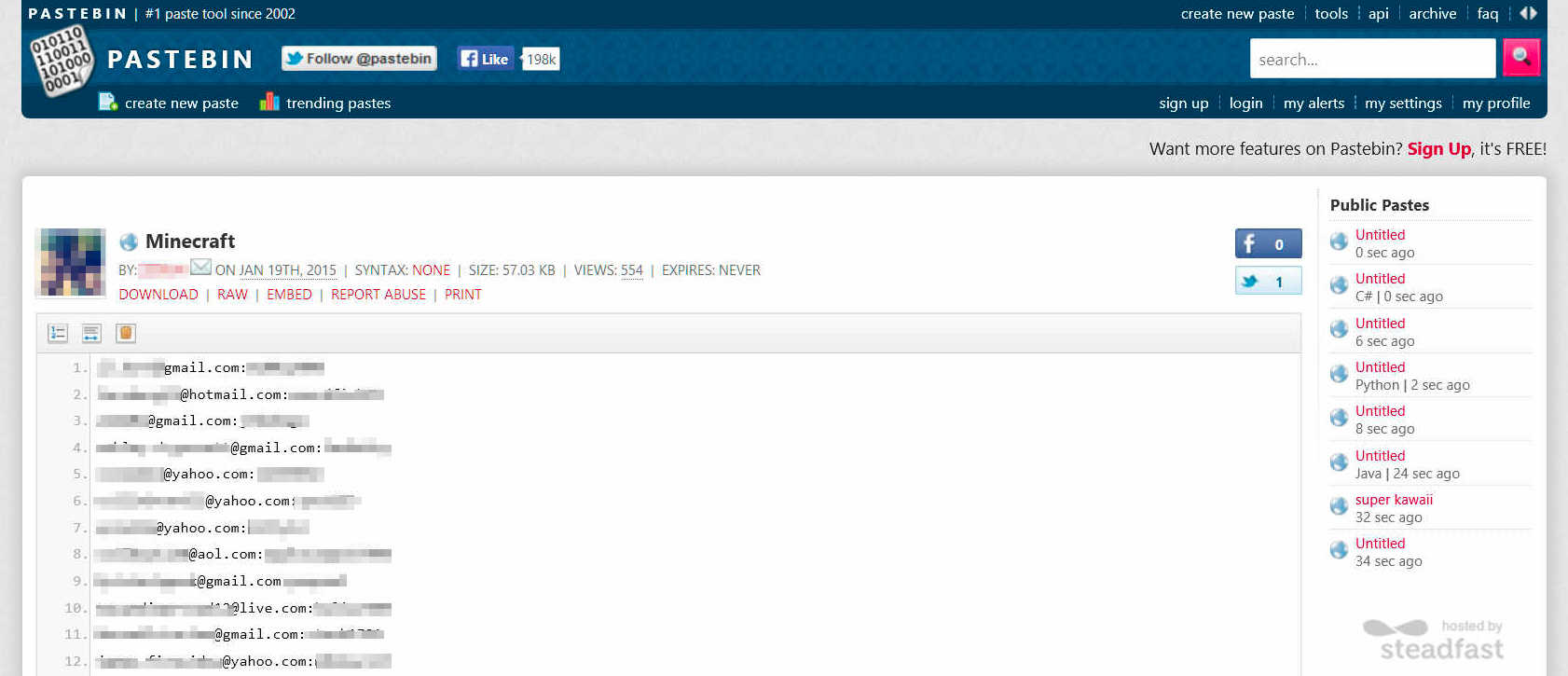
-

Google Glass is dead -- will anyone mourn its passing?
Publié: janvier 15, 2015, 8:30pm CET par Wayne Williams
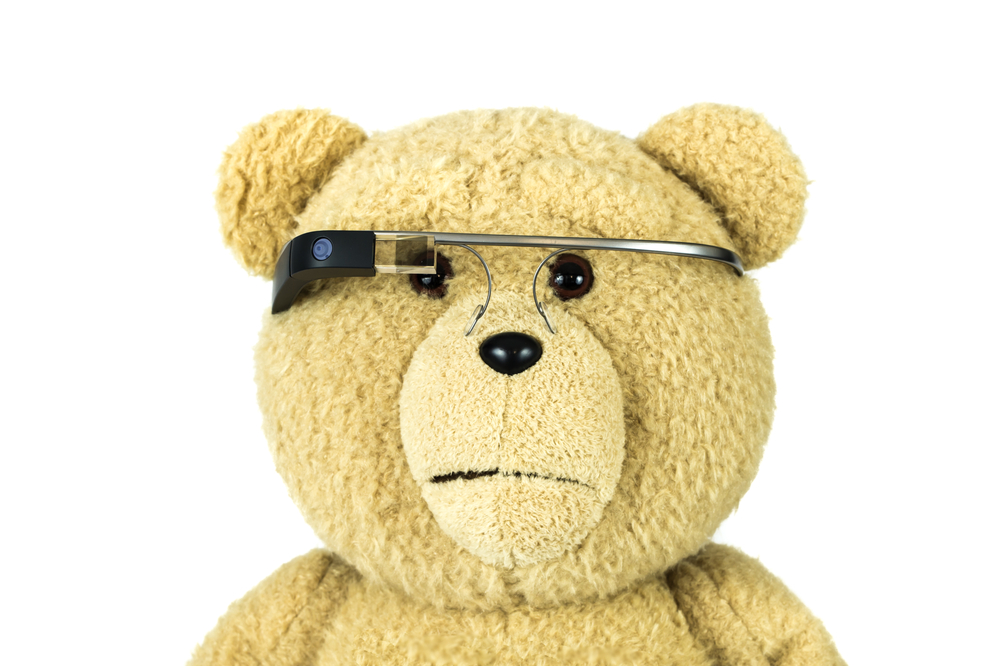
Google Glass was an interesting project, but now it is no more. It never really took off, and was never likely to. It was ahead of its time -- promising much, but never quite delivering. Along the way it encountered numerous stumbling blocks -- it cost a fortune, made you look daft, and could well result in you getting mugged, or thrown out of a cinema if you tried to wear it while a film was on.
Google has said that it will stop producing Glass in its present form, and will instead focus on "future versions", but that’s just the search giant’s polite way of avoiding saying the project is dead, and the Glass team will be using its corpse as a stepping stone to something new.
The Explorer program, which launched in the US in 2013 before expanding last year, will be canned, leaving all those Glass Explorers -- or Glassholes, as they were affectionately known -- with expensive devices that will never transform into the fully realized products they were supposed to be.
Going forward, Glass will be exiting the Google X research lab to become a stand-alone undertaking under its current manager Ivy Ross, and overseen by Tony Fadell, the chief executive of Nest.
Fadell told the BBC that Glass had "broken ground and allowed us to learn what's important to consumers and enterprises alike" and he would be working with the team to "integrate those learnings into future products". Quite what that means, no one knows for certain. Probably not even the Glass team itself at the moment.
It’s possible, likely even, we will see a new and improved Glass at some point in the future, but whether it will bear any resemblance to the version that Google has just called time on remains to be seen.
-

Save Outlook.com email attachments directly to OneDrive with a single click
Publié: janvier 14, 2015, 6:49pm CET par Wayne Williams
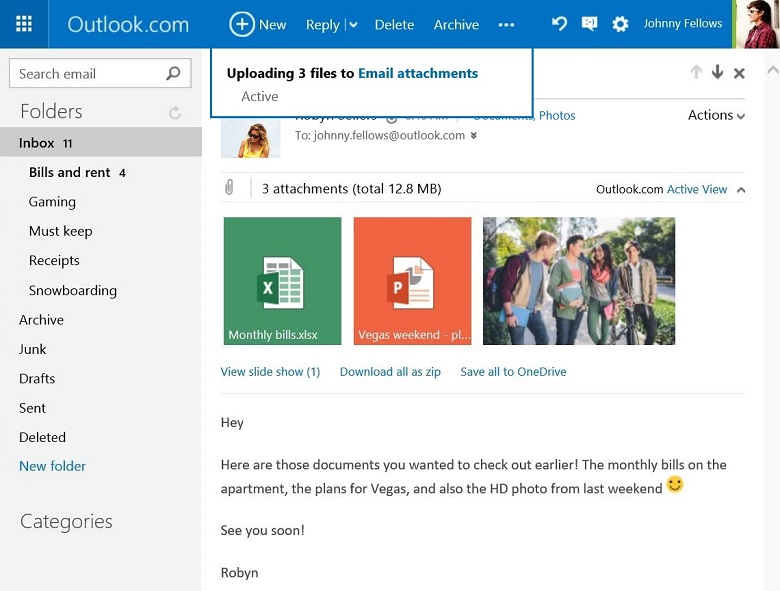
Managing email attachments in Outlook.com just got a whole lot easier thanks to a new 'Save to OneDrive' feature which Microsoft is rolling out from today.
The popularity of cloud storage services like OneDrive mean you no longer need to email files to yourself to access them from anywhere, but people still do that from time to time for ease (and -- hands up -- I’m one of them), which can result in a messy and chockfull inbox. Save to OneDrive lets you move attachments you’ve received, or sent to yourself, straight to Microsoft’s cloud storage service, and all it takes is a single click.
The attachment type doesn’t matter as the feature doesn’t attempt to sort the files, or do anything clever, it just moves them straight to a folder called 'Email attachments' on OneDrive. Once there, you can sort them however you like, move them into different folders and so on.
You can save all of the attachments in an email, or just individual ones.
Save to OneDrive is rolling out globally now, but as with all new Outlook.com features, it may take a while before you see it.
I'll definitely benefit from this new feature, what about you?
-

Amazon Studios partners with Woody Allen for his first ever television series
Publié: janvier 13, 2015, 3:28pm CET par Wayne Williams

Amazon usually produces TV pilots before deciding which ones to turn into full series. Unsurprisingly, its union with critically-acclaimed writer/director Woody Allen, won’t be going through this process.
The company has already ordered a full season of the Untitled Woody Allen Project, which will premiere exclusively on Prime Instant Video.
It will be available in the US, UK and Germany, and be written and directed by Allen himself. There’s no word on what the show will be about, or casting details at the moment.
"Woody Allen is a visionary creator who has made some of the greatest films of all-time, and it’s an honor to be working with him on his first television series," says Roy Price, Vice President of Amazon Studios. "From Annie Hall to Blue Jasmine, Woody has been at the creative forefront of American cinema and we couldn’t be more excited to premiere his first TV series exclusively on Prime Instant Video next year".
Woody Allen added, "I don’t know how I got into this. I have no ideas and I’m not sure where to begin. My guess is that Roy Price will regret this".
Image Credit: Lucky Team Studio / Shutterstock
-

Apple CEO Tim Cook fast-tracks 'Je suis Charlie' app
Publié: janvier 13, 2015, 2:50pm CET par Wayne Williams
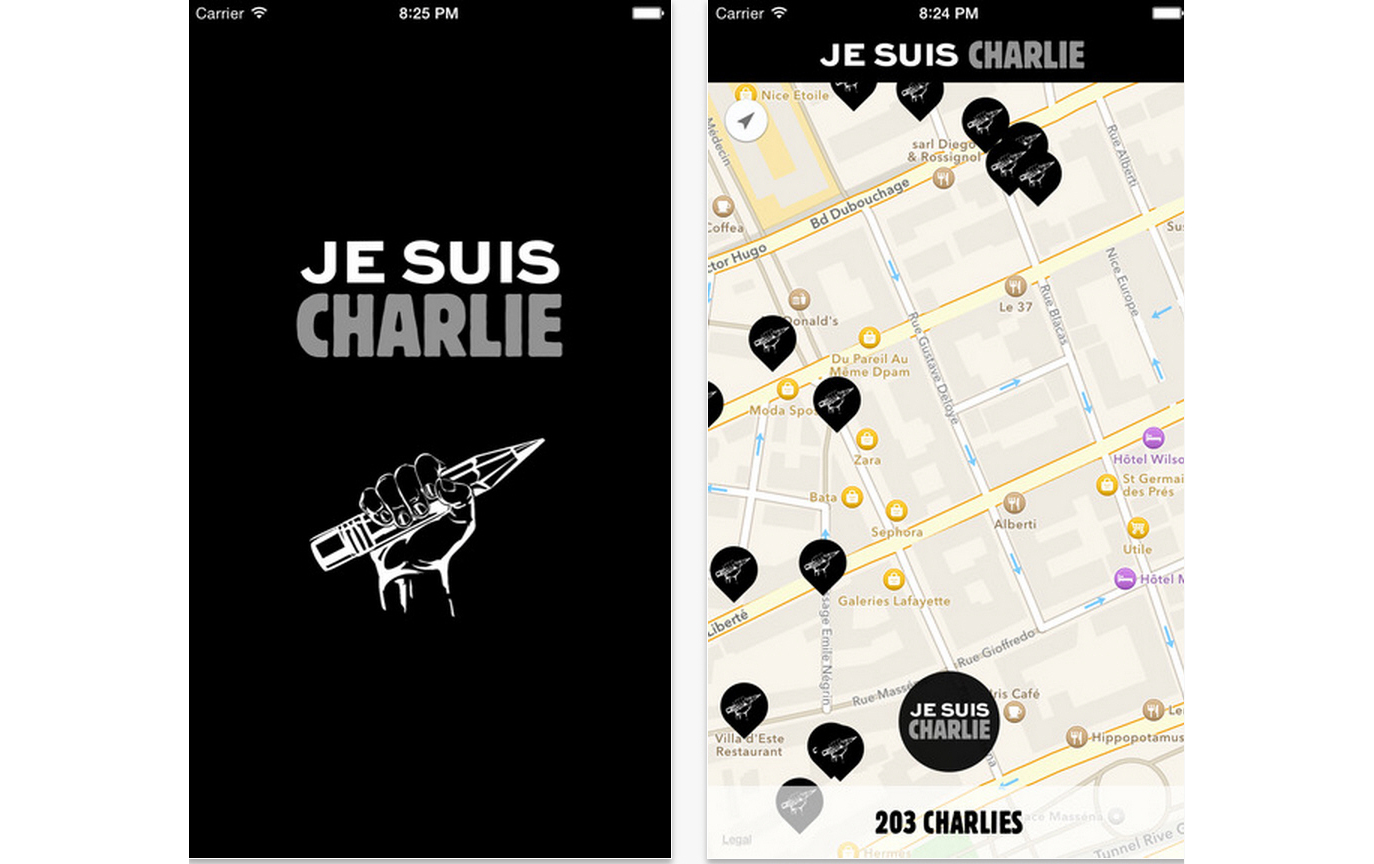
Apple’s rigorous approvals procedure means it can take quite some time for an app, or app update, to make its way into the App Store. 10-15 days is a typical approvals time.
French news agency Nice-Matin created an app which allows users to show their support for controversial French magazine Charlie Hebdo, but was faced with an obvious problem. By the time the app was available in the App Store, support for the 'Je suis Charlie' campaign would have started to dwindle. So the company emailed Apple CEO Tim Cook.
Cook’s assistant replied within ten minutes, and the app was duly fast-tracked through the approvals procedure. It’s available to download now.
The app isn’t anything stunning -- you add your location to a map to show your support for the Je suis Charlie campaign. At the time of writing, some 120,000 'Charlies' have shared their location, with the majority (as you’d expect), being based in France.
The next issue of Charlie Hebdo has a print run of 3 million. That’s quite a lot more than the 60,000 copies that are usually distributed. The cover features a cartoon of the Prophet Mohammad clutching a 'Je suis Charlie' sign below the statement "Tout est pardonné” (All is forgiven).
-

Windows 7 mainstream support ends today -- should you panic?
Publié: janvier 13, 2015, 2:09pm CET par Wayne Williams
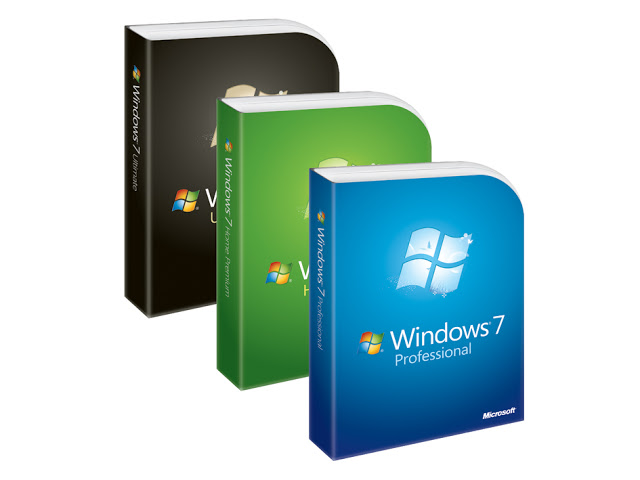
Windows 7 is by far and away the most popular operating system, and likely to remain so for many years to come. Windows 8.1 did nothing to dent the older OS’s popularity -- in fact, it helped propel it to ever greater heights -- and Windows 10 will have its work cut out to unseat Windows 7 from the top of the pile.
Every Microsoft operating system comes with five years of mainstream support in which the software giant provides security and non-security updates and complimentary online and telephone support, and today, Windows 7 Service Pack 1’s mainstream support comes to an end. So what does that mean for the legions of Windows 7 users?
Not a lot, truth be told. What it essentially means is Windows 7 Service Pack 1 is now entering the extended support phase. This lasts another five years (possibly longer, depending on Windows 7’s enduring popularity), and will ensure users continue to receive security fixes, and patches for known issues -- what’s required to keep the software and users safe -- but that’s all. Users will no longer receive non-security related updates or complimentary support.
The vast majority of users won’t notice any difference at all. All most people want is updates designed to make sure the operating system remains secure, and that won't change. So if you’re a Windows 7 user, you can breathe easy. For another five years, at least.
Businesses running Windows 7 can purchase paid support and an Extended Hotfix Support Agreement.
-

'Islamic State' hacks US Centcom Twitter feed, YouTube channel
Publié: janvier 12, 2015, 7:55pm CET par Wayne Williams

US Central Command's Twitter account appears to have been hacked by CyberCaliphate, a hacker group claiming association with ISIS.
The Twitter feed has since been taken down, but posted messages included "AMERICAN SOLDIERS, WE ARE COMING, WATCH YOUR BACK. ISIS. #CyberCaliphate", "Pentagon Networks Hacked! China Scenarios", and "Pentagon Networks Hacked. Korean Scenarios". These last two posts came with military maps and information relating to the countries in question.
Other military documents also appeared on the Centcom Twitter feed. These contained names and phone numbers of military personnel, and were posted under the message "We won’t stop! We know everything about you, your wives and children". Although it appears at least some of the shared files were already in the public domain.
Centcom’s YouTube account was also hacked, and has since been terminated by Google.
A post on Pastebin says
Pentagon networks hacked
AMERICAN SOLDIERS,
WE ARE COMING, WATCH YOUR BACK. ISIS. #CyberCaliphate
In the name of Allah, the Most Gracious, the Most Merciful, the CyberCaliphate under the auspices of ISIS continues its CyberJihad. While the US and its satellites kill our brothers in Syria, Iraq and Afghanistan we broke into your networks and personal devices and know everything about you.
You'll see no mercy infidels. ISIS is already here, we are in your PCs, in each military base. With Allah's permission we are in CENTCOM now.
We won't stop! We know everything about you, your wives and children.
U.S. soldiers! We're watching you!
Here's a part of confidential data from your mobile devices:
[links redacted]
There is no God but Allah and Muhammad is his Prophet! There is no law but Sharia!
US Central Command confirmed the hack, saying in a statement: "We can confirm that the CENTCOM Twitter and YouTube accounts were compromised earlier today. We are taking appropriate measures to address the matter".
The hack occurred as President Barack Obama was finishing a major speech on cybersecurity. The timing is unlikely to be coincidental, and designed to cause maximum embarrassment.
-

Apple now a more popular camera brand than Nikon -- on Flickr anyway
Publié: janvier 10, 2015, 6:26pm CET par Wayne Williams

If asked to name the top camera brands, the chances are you’ll start with Canon and Nikon, followed by names like Samsung, Sony, Olympus, and Fujifilm. Apple probably wouldn’t make most people’s top five, but it’s long been incredibly popular on Flickr.
The photography website has released its yearly list of the most popular camera brands (based on the number of photos uploaded) and reveals that in 2014 Apple claimed the second spot, behind Canon, nudging photography giant Nikon into third place.
Flickr reveals the top five brands as Canon (13.4 percent), Apple (9.6 percent), Nikon (9.3 percent), Samsung (5.6 percent), and Sony (4.2 percent). In 2013, Apple had 7.7 percent, and Nikon 8.8 percent, so both brands saw an increase in popularity year-on-year.
Apple also totally dominates the list for "mobile cameras" used on Flickr, taking seven of the top ten spots, with different iterations of iPhone and the iPad and iPad mini. Samsung Galaxy S3 and S5, and the HTC One were the only non-Apple products to make the list. In 2013, Apple accounted for eight out of ten products.
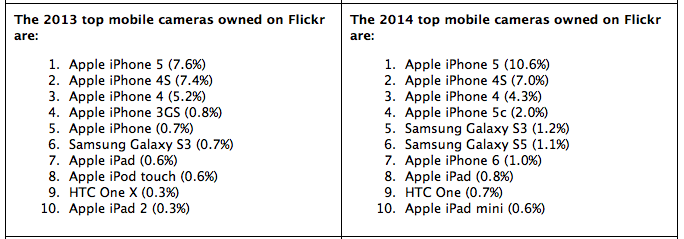
Flickr also revealed that over 10 billion photos were uploaded last year by more than 100 million users.
-

I want wearable technology that doesn't look like wearable technology
Publié: janvier 9, 2015, 3:43pm CET par Wayne Williams
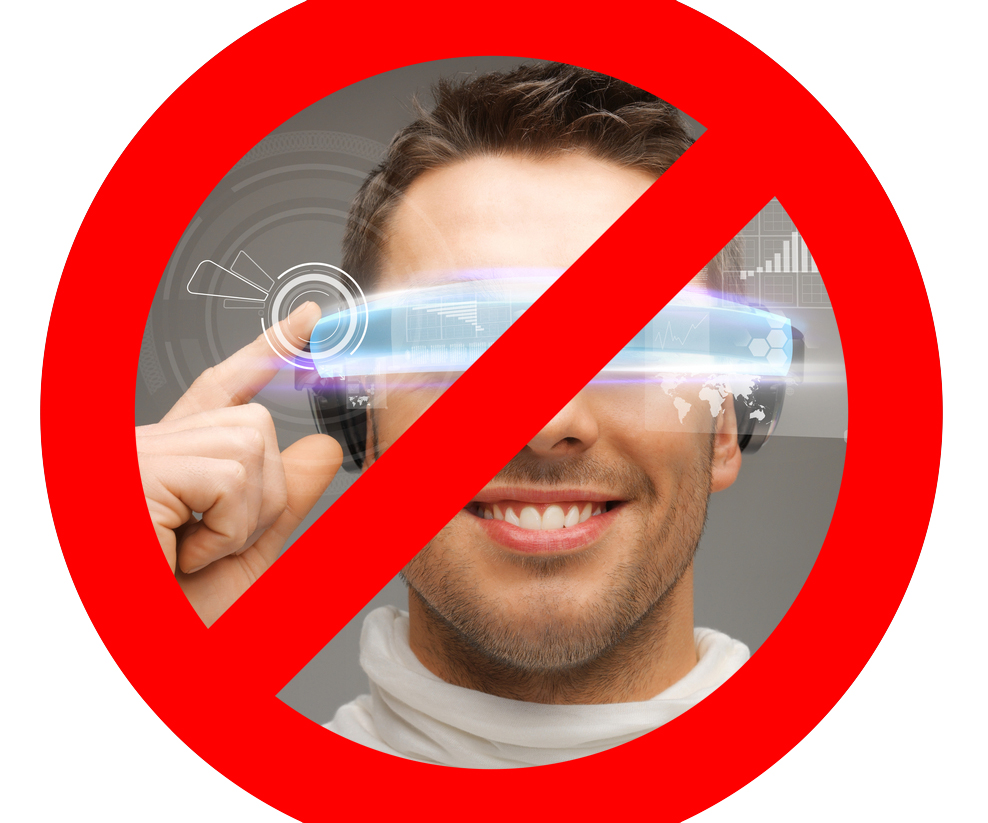
2015 is quite likely to be the year when wearable technology finally reaches the mainstream, thanks in no small part to the arrival of Apple Watch. CES is, of course, awash with wearables, but few of them really appeal to me and I can’t see those devices finding much of an audience either. Part of the problem is a lot of wearables are designed to duplicate functionality already found in existing devices. People are used to glancing at their phones to see the time, and get notifications, and that makes a smartwatch -- which offers the same, albeit slightly reduced functionality, on a much, much smaller screen -- seem unnecessary. And there are other problems.
The current generation of wearables, from smartwatches to smartglasses, are also designed to replace watches, spectacles, and so on, that you might already own. While most people I know don’t wear watches, I do. My timepiece of choice is the Omega Seamaster, and I love it. It’s the perfect blend of style and functionality for me. The idea of swapping my watch for something that looks cheap and ugly as some (not all) smartwatches do really doesn’t appeal in the slightest. I currently have an UP24 fitness band nestled up against the Omega (because Jawbone recommends you wear it on the non-dominant arm for improved accuracy) and the black rubber band looks horrible next to the Omega’s polished stainless steel strap.
It would be fantastic if there was a way of getting the UP24’s fitness tracking abilities in my own watch, and I’m sure more spectacle wearers would embrace Google Glass, or a rival, if some of its functionality could be added, unobtrusively, to their own eyewear.
At CES (and before) several companies showed off wearables I could definitely see myself buying. Top of the list, for me, are products like Montblanc’s smart watch strap, which provides smartwatch functionality on the underside of the strap. A small display shows smartphone notifications, and lets you control music and your smartphone camera. The e-strap comes as an optional addition to the Montblanc Timewalker Urban Speed collection, but other firms, including Kairos with its Tband, are working on straps that can be used with any watch.
The subtle integration of smart technology into existing products is a fantastic idea. Sure you don’t get anywhere near the capabilities you’d find in a full smartwatch, but if you aren’t likely to need or use all of those features, does that matter? A smart watch strap will (in theory) be a lot cheaper than a smartwatch, and easier to replace.
Smart Glasses that look like Glasses
Another product at CES I liked was Meme, from Japanese spectacles maker JINS. These are normal glasses with smart technology built in ("The world's first eyewear that lets you see yourself", apparently). It’s not Google Glass -- people won’t know you’re wearing an expensive piece of tech, and the absence of a camera means you won’t be thrown out of a cinema for wearing them, so that’s good. The glasses have electrooculography (EOG) sensors built into the nose pads and bridge that can detect your eye movements and actions like blinking, and it can also monitor head movement tracking via the built in gyroscope and accelerometer. There’s no screen but linked to your smartphone, this technology offers a wealth of possibilities. It can’t be added to existing glasses at the moment, but it’s not too much of a stretch to see it (or something similar) being offered as an optional extra by other glasses manufacturers in the future.
While most companies are, understandably, focusing on building smart products, I’m a fan of the idea of integrating smart technology into every day dumb items. It maybe makes me odd, but I’d rather own a pair of Nikes I like, with the option to add some kind of fitness tracking pedometer to the heel, than own a pair of Nikes with integrated technology that I think are fugly.
Style and technology can go hand in hand -- or at least that’s what Apple Watch hopes to prove -- but often they don’t. I am a geek, but I don’t want to look like a cut-price cyborg just to get the primary benefits offered by wearable technology.
Image Credit: Syda Productions /Shutterstock
-

Microsoft goes for gold with special editions of Lumia 830 and Lumia 930
Publié: janvier 8, 2015, 2:46pm CET par Wayne Williams
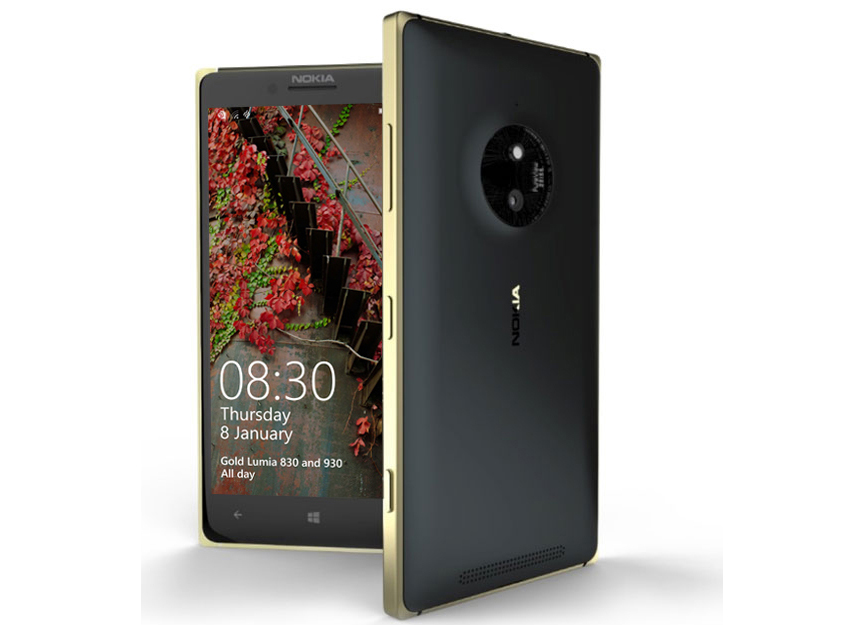
When, in 2013, Apple announced the iPhone 5s would be available in a gold color there were a few raised eyebrows and snarky comments. However, as is often the case, where Apple leads, others follow, and it wasn’t long before gold versions of other smartphones started to arrive. Handsets given the Midas touch include the Samsung Galaxy S5, HTC One (M8), LG G3, Huawei Ascend Mate 7, and Sony Xperia Z3.
And now Microsoft has decided to add a little bling to its Windows Phones with gold editions of the Lumia 830 and Lumia 930 -- and they look good. Really good.
The Lumia 830 Gold will be available in black and white from February, in select countries in Europe, Asia Pacific and China, and India, the Middle East and Africa. The Lumia 930 Gold will be available in black this week, and in white towards the end of January. It will be sold in the same countries as the 830, with the exception of India. No word yet on whether either phone will make it to the US.
Microsoft says the price will vary by region and operator, but the standard Lumia 830 has an MSRP of €330 ($400) before taxes and subsidies, and the Lumia 930 retails for around €500 ($580).
Lumia 830 features include: 5-inch IPS display with a resolution of 720 by 1,280; 1.2 GHz quad-core Qualcomm Snapdragon 400 processor; 1 GB of RAM; 2,200 mAh battery; 10 MP main camera with optical image stabilization and 1080p video recording; 0.9 MP secondary camera capable of recording 720p video; 16 GB of internal storage; microSD card slot; 4G LTE; Wi-Fi 802.11 a/b/g/n; NFC; Windows Phone 8.1 Update 1 with Lumia Denim firmware. Lumia 830 comes in at 139.4 x 70.7 x 8.5 mm and 150 grams.
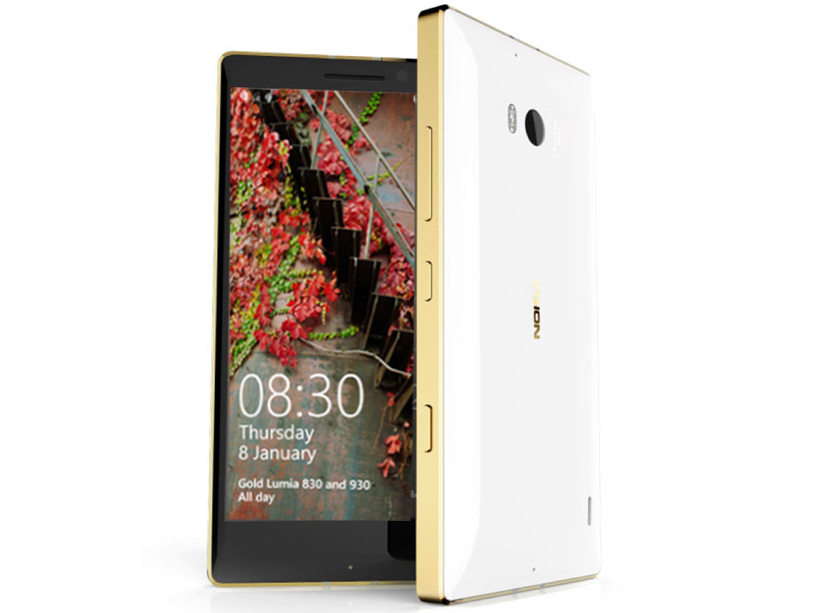
Lumia 930 specs include a 5.0-inch OLED display with a resolution of 1080 by 1920; 2.2 GHz quad-core Qualcomm Snapdragon 800; 2 GB of RAM; 2,420 mAh non-removable battery; 32 GB of internal storage; 20 MP PureView back-facing camera with optical image stabilization and 1080p video recording; 1.3 MP front-facing camera capable of 720p video recording; 4G LTE; Wi-Fi 802.11 a/b/g/n/ac; Bluetooth 4.0; USB 2.0; NFC; DLNA; Qi wireless charging; physical dimensions of 137 x 71 x 9.8 mm and 167 grams.
Are you tempted by either of the golden editions?
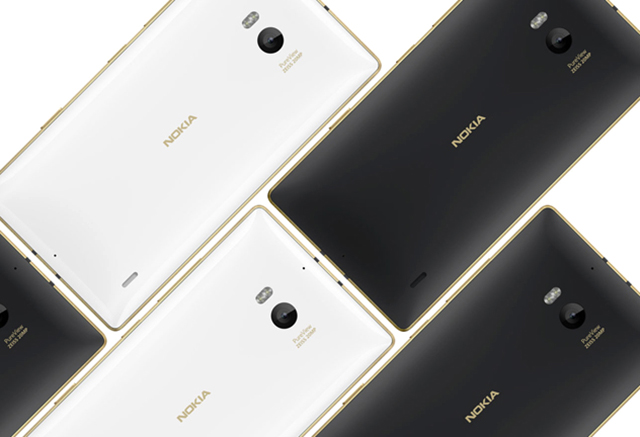
-

Microsoft makes WorldWide Telescope open source
Publié: janvier 8, 2015, 10:44am CET par Wayne Williams

WorldWide Telescope is the best free astronomy program around, and comes packed with detailed views of the universe and tons of interactive educational content, including tours narrated by astronomers and experts. It’s used in schools, universities, and planetariums around the world. If you’ve never tried it, and have an interest in the stars, then it’s well worth a download.
Although WorldWide Telescope has always been free, today Microsoft takes the giant leap of making it open source, which is fantastic news and will make an already great program even better. As Microsoft explains:
Millions of people rely on WorldWide Telescope (WWT) as their unified astronomical image and data environment for exploratory research, teaching, and public outreach. With OpenWWT, any individual or organization will be able to adapt and extend the functionality of WorldWide Telescope to meet any research or educational need. Extensions to the software will continuously enhance astronomical research, formal and informal learning, and public outreach.
Microsoft says the OpenWWT consortium will have a three part mission that focuses on advancing astronomical research, improving formal and informal astronomy education, and enhancing public outreach.
What do you think of the news?
Image Credit & Copyright: Adam Block, Mt. Lemmon SkyCenter, U. Arizona
-

Intel's Compute Stick is a Windows 8.1 PC on an HDMI dongle
Publié: janvier 7, 2015, 7:08pm CET par Wayne Williams
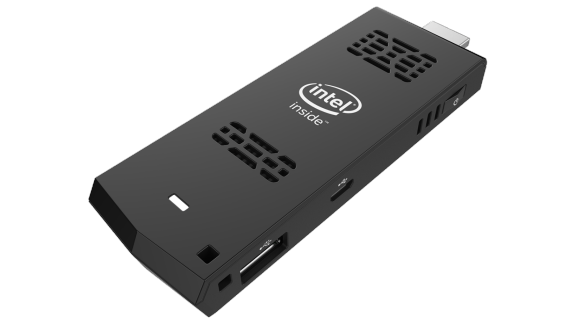
The Enterprise edition of Windows 8.1 has a feature called Windows To Go, which lets you build a portable version of the operating system that you can run directly from a USB flash drive. It works well enough but you need a super-fast (and therefore expensive) USB 3.0 stick to get decent performance.
Intel has come up with an alternative solution that can turn any HDMI display into a fully functioning computer running Windows 8.1 with Bing, or Ubuntu Linux.
The Compute Stick is a 4 inch HDMI dongle, with the operating system pre-installed. It features a quad-core Atom processor (Intel hasn't revealed the type, but it's thought to be a Bay Trail Z3735F), 2GB of RAM, built-in wireless connectivity (802.11b/g/n and Bluetooth) and 32GB on-board storage. There's also a micro SD card slot if you need more space, and a USB port to connect devices. It has a micro USB port too, but this is just for power.
Intel plans to retail the Windows version of the stick for $149. If you prefer Ubuntu, that version will cost you $89, but offers reduced RAM (1GB) and storage (8GB).
Intel says the Compute Stick is "everything you love about your desktop computer in a device that fits in the palm of your hand". That's pushing it a bit, but it certainly looks interesting.
The dongle isn’t available yet -- Intel is aiming for a March release -- but you'll be able to get additional information from here in due course.
What do you think about the Compute Stick? Is it something you'd be likely to buy?
-

Yahoo takes a big bite out of Google's search share, catching up to Bing
Publié: janvier 7, 2015, 1:47pm CET par Wayne Williams
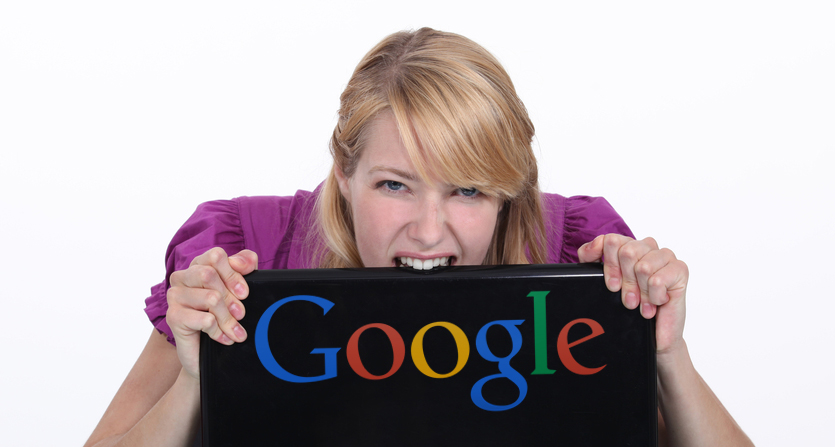
When Mozilla announced that Yahoo would be replacing Google as the default search choice in Firefox in the US, there were raised eyebrows everywhere. After all, Google has been baked into Firefox for the past decade, and Yahoo’s days as a top search engine are long gone. Or were long gone at least.
Yahoo’s inclusion in Firefox has given the ailing search engine a major boost, helping it achieve its highest US search share since 2009. Unsurprisingly, this share increase came at the expense of Google.
According to independent website analytics provider StatCounter, in December 2014, Yahoo claimed 10.4 percent of the US search share, up from 8.6 percent in November. That’s an improvement of 1.8 percentage points. Google dropped from 77.3 percent to 75.2 percent in the same time period. That’s its lowest search share in the US since StatCounter began recording search data in 2010.
Yahoo’s change in fortunes might not seem massive, but it’s now just 2.1 percent behind Bing which currently has a 12.5 percent share of the US search market. Not that Microsoft is going to be worried about the competition -- Yahoo search is powered by Bing anyway, and Google is the ultimate target for both.
"The move by Mozilla has had a definite impact on US search," commented Aodhan Cullen, CEO, StatCounter. "The question now is whether Firefox users switch back to Google". It's a valid question. Is Yahoo's gain a trend or a blip? We'll have a better idea in the coming months.
Firefox users represented just over 12 percent of US internet usage in December.
Worldwide, the picture is much rosier for Google which has 88.02 percent of the search market. Bing is on 4.51 percent, just above Yahoo on 4.38 percent.
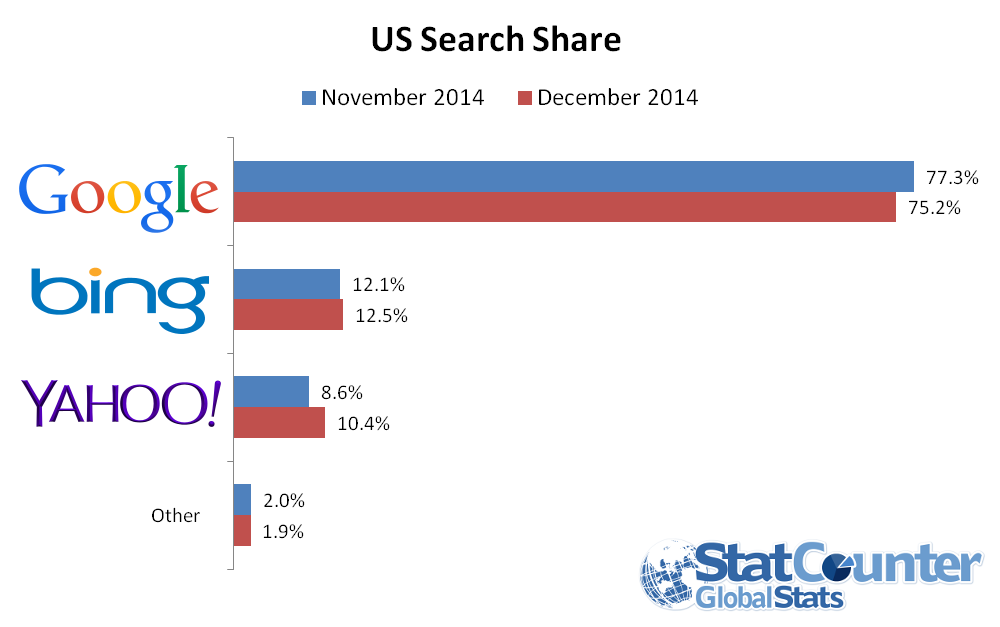
Photo credit: auremar / Shutterstock
-

Atari Fit motivates you to exercise with the promise of classic games
Publié: janvier 6, 2015, 7:47pm CET par Wayne Williams
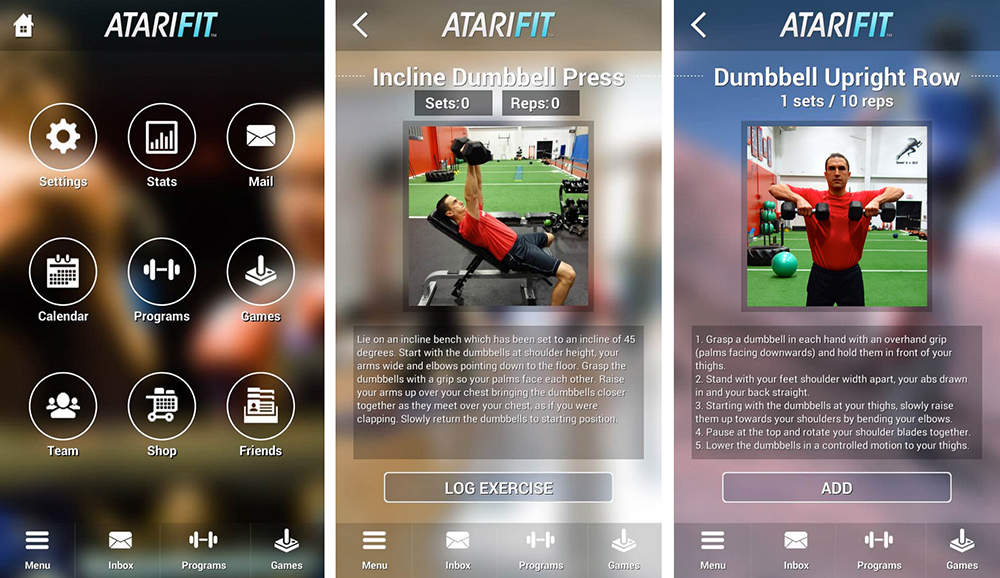
January is the time of year when people traditionally decide to lose weight and get fit. Partly it’s because a new year equals a new start, and secondly it’s because the month follows the holidays when we’ve all overindulged and packed on the pounds.
This is the perfect time for companies to release fitness products, and veteran games company Atari is hoping to cash in with the announcement of a new 'gamified' fitness app that offers an unusual nostalgic twist.
Atari Fit for iOS and Android contains over 150 different exercise routines and custom programs, and completing them earns you points which can be used to unlock classic Atari games such as Pong, Super Breakout, and Centipede.
"Atari Fit is the first fitness app to motivate and reward players with gameplay for being active in between gaming sessions", says Fred Chesnais, Chief Executive Officer, Atari. "It’s a gamified fitness experience with an Atari twist. Players are motivated to work toward their fitness goals, while offering a fun, competitive experience where they earn coins and can unlock their favorite classic Atari games. The team and leaderboard components are especially unique to the Atari Fit experience, as players around the globe can exercise, play and get healthy together".
Atari Fit offers numerous social features and is compatible with health and fitness tools, including Fitbit and RunKeeper.
The app isn’t out yet, but will arrive later this month. You can keep an eye on the website for launch details.
-

The Internet Archive now lets you play 2,400 classic DOS games online
Publié: janvier 6, 2015, 12:37pm CET par Wayne Williams
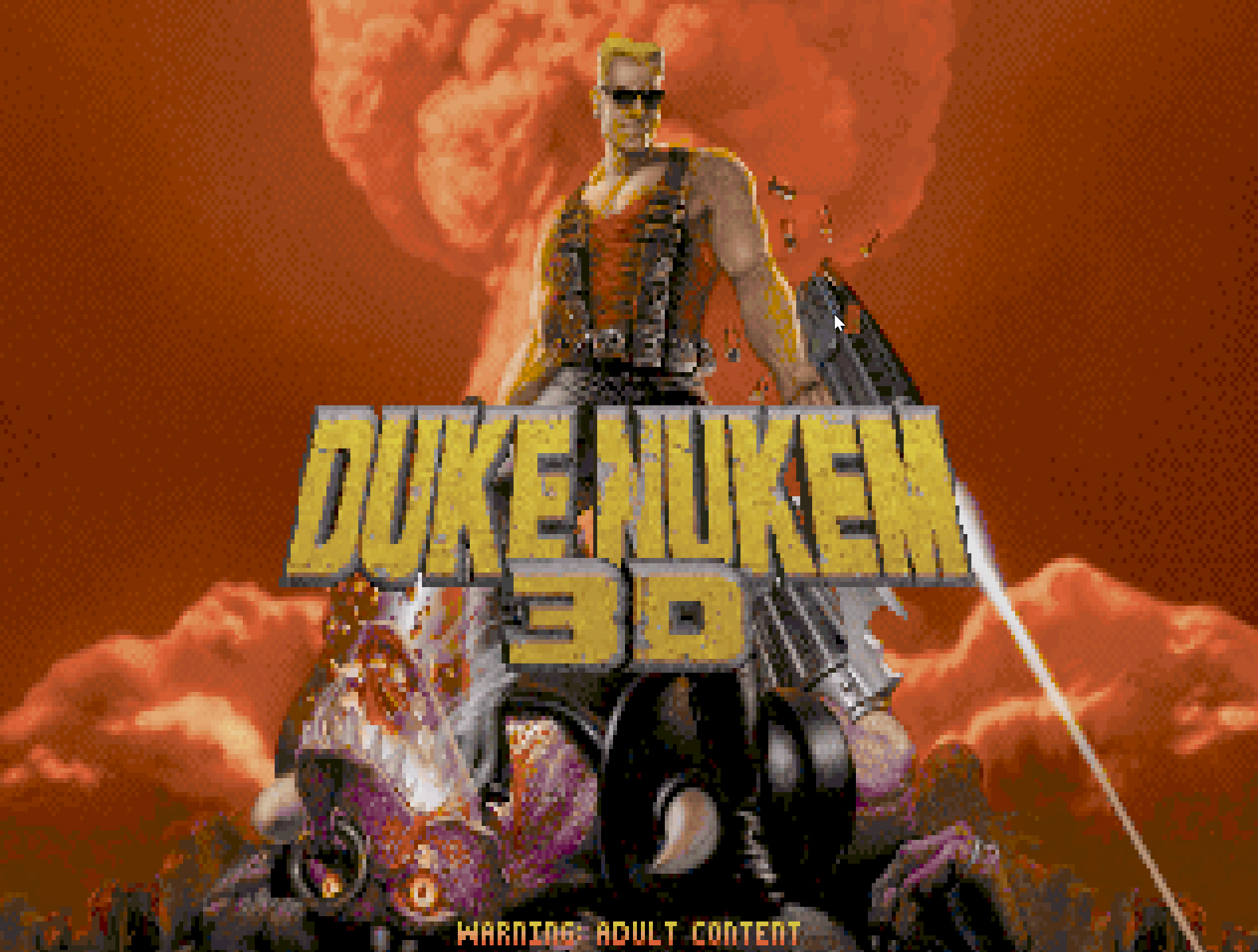
In late 2013, the Internet Archive introduced a new area of its site called the Console Living Room which lets visitors play classic console games from systems of the past (including the Atari 2600, Atari 7800, ColecoVision, Magnavox Odyssey and Astrocade) in a web browser. In 2014, it made over 900 classic arcade games playable in its Internet Arcade. And now, in 2015, playable DOS games arrive on the site.
If, like me, you spent a lot of the 90s playing games on the PC, this is like a late, but very welcome, Christmas present. There are currently 2,391 games available to play, including classics like Cannon Fodder 2, Boulder Dash, Duke Nukem 3D, Prince of Persia, Championship Manager, The Incredible Machine, Eye of the Beholder (and its sequels), Hexen, Sim City, Wing Commander Academy, and the Kings Quest, Space Quest, and Leisure Suit Larry series -- to name just a few. More titles are promised, and the collection will change over time.
The full list of games is here, and you can sort it by views (popularity), title, date, and creator. The information on the titles comes from Moby Games so will provide you with most of the details you’re likely to need.
The games all run in DOSBox, but sadly not all of them will function as they should. The truth is some of the games on offer will crash, may not play as intended (you will have two cursors in point and click adventure games for example, unless you select full screen), and -- because you’re playing them in your browser -- you won’t be able to save your progress. This last point will be a killer for a lot of games, but you can continue playing so long as you keep the browser window open.
The games run in Firefox and Chrome (provided JavaScript is enabled) but not currently Internet Explorer. IE compatibility is planned for the future, however.
If you’re feeling nostalgic for the games of yesteryear then this is a fantastic resource. The problems you might encounter can be frustrating, but there are so many games on offer that if one doesn’t work for you, then you can just start playing another.
What DOS games did you used to enjoy?
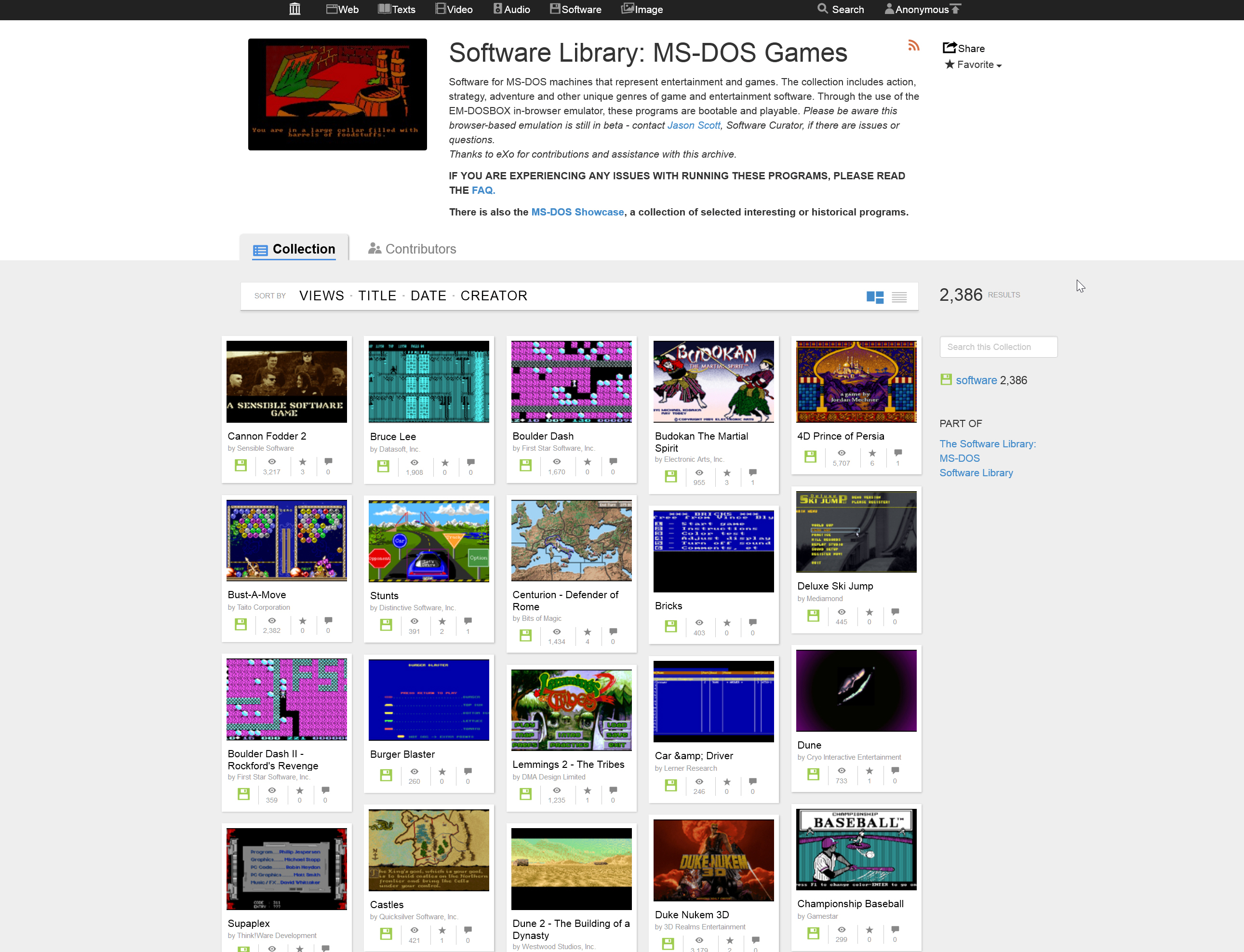
-

Lenovo updates the ThinkPad for 2015 and introduces ThinkPad Stack accessory system
Publié: janvier 5, 2015, 9:05am CET par Wayne Williams
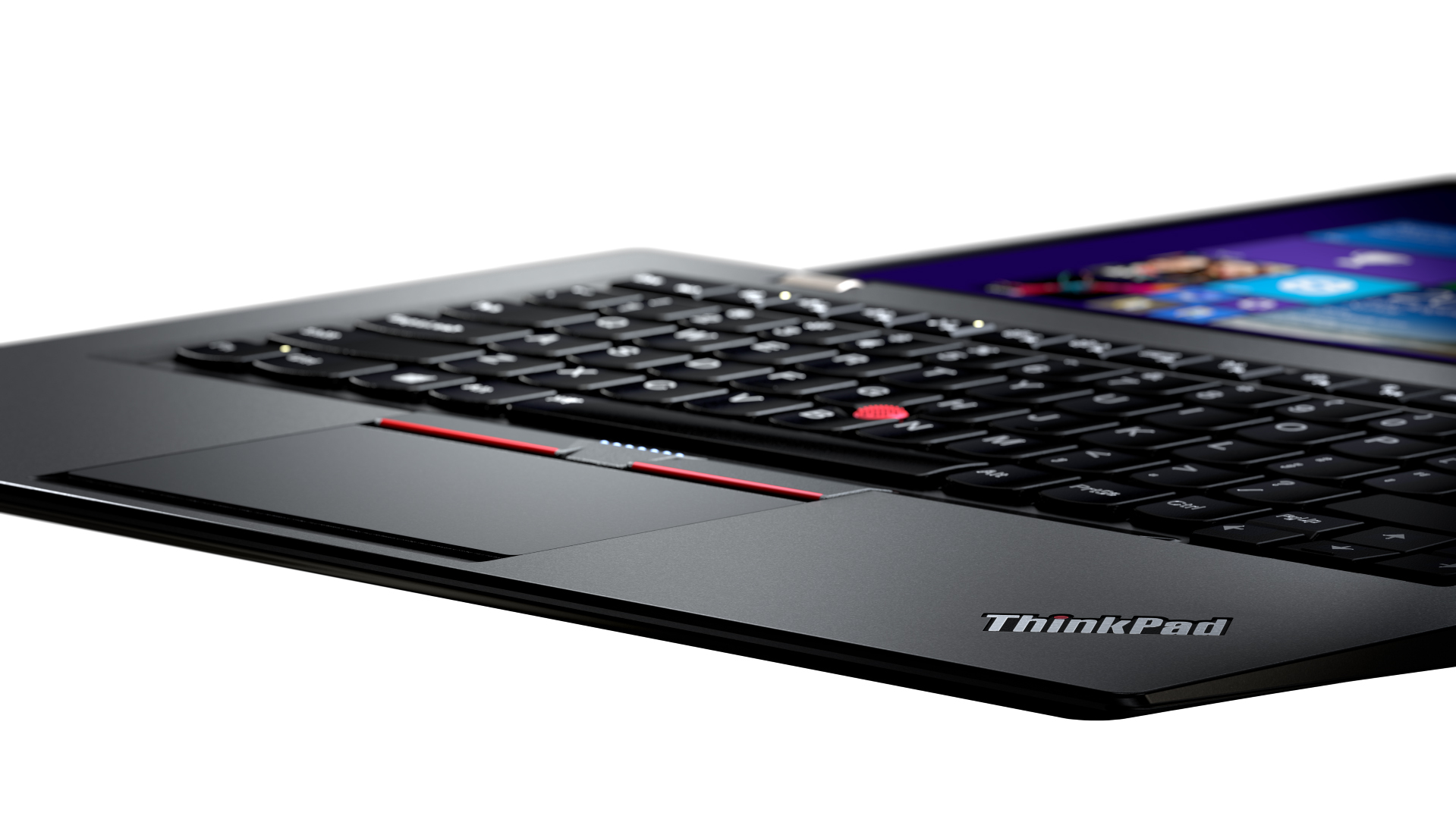
At the 2015 International Consumer Electronics Show, Lenovo celebrated shipping 100 million units of the ThinkPad, and updated its portfolio for 2015, which includes the third generation X1 Carbon.
The Chinese tech giant also introduced ThinkVision X24, a 7.5mm thin IPS 23.8 inch monitor with DisplayPort and HDMI connectivity, and ThinkPad Stack, a power bank that offers mix and match interlocking accessories.
"Since the original ThinkPad 700, ThinkPad engineers have continued to drive innovation by making each new ThinkPad better than the last. Reaching 100 million units sold proves they are succeeding", Yang Yuanqing, chairman and CEO, Lenovo commented. "When we acquired IBM’s PC business, we made a promise to not just protect the ThinkPad franchise, but to make it even better, even stronger. Today, ThinkPad continues to be one of the most respected brands in the industry, fueling Lenovo’s rise to number 1 in the global PC industry. Now, even as Lenovo expands into mobile devices, servers, and ecosystem and cloud computing, ThinkPad will remain at the core of our strategy and the heart of our business. It is an honor to continue to bring this legendary brand to our customers, and I look forward to many more ThinkPad milestones to come".
The X1 Carbon, Lenovo’s lightweight ultrabook (it weighs under 2.9lbs), gains new features including a super bright FHD display for improved viewing and a PCIe solid state drive which, Lenovo says, will deliver 80 percent faster storage performance than standard SSDs. The new X1 Carbon is powered by 5th gen Intel Core processors and promises improved battery life.
ThinkPad X1 Carbon is priced from $1249 and will be available from January 2015. ThinkVision X24 is priced at $249 from April 2015, while ThinkPad Stack accessories will be available from mid-April 2015.
The ThinkPad Stack is an interesting product that uses a magnetized interlocking design so you can stack together accessories such as a 10,000 mAh Power Bank, a 1TB USB 3.0 Hard Drive, Wireless Access Point and Bluetooth speaker.
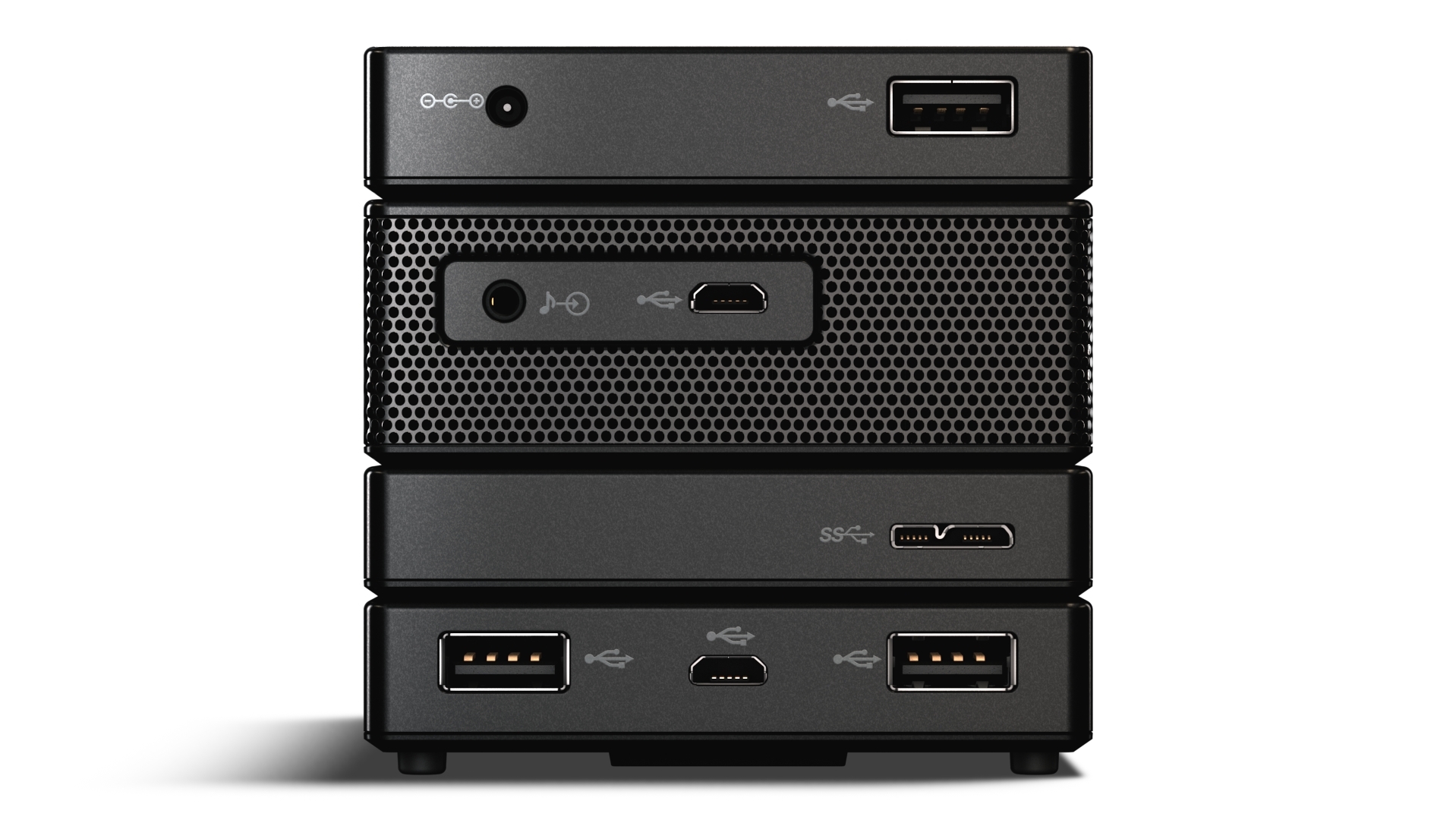
-

NetMarketShare adjusts its figures -- still has Windows 8.x losing major usage share
Publié: janvier 2, 2015, 9:15am CET par Wayne Williams

Yesterday, web analytics firm NetMarketShare released its monthly breakdown of desktop operating system usage share, and it contained a huge shock. According to the figures, Windows 8.x had dropped to its lowest usage share since March 2014, putting it back below XP.
It was a surprise because Windows 8 and 8.1 had both shown solid growth in the previous two months, but suddenly, according to NetMarketShare, 8.x had dropped a whopping 7.07 percentage points in a single month, most of that going to Windows NT. As I observed when reporting, something not quite right there. Late yesterday, the figures were pulled, and new ones have appeared today that show the tiled OS still doing badly, just not quite as badly.
According to the new figures, Windows 8 went from 6.55 percent in November to 4.03 percent in December, losing 2.52 percentage points. Windows 8.1 went from a high of 12.10 percent to 9.49 percent, a drop of 2.61 percentage points. Combined, NetMarketShare shows 8.x dropping 5.13 percentage points for a total share of 13.52 percent. That’s an improvement on yesterday’s loss of just under 2 percentage points, but still not great news for Microsoft.
In the revised figures, Windows 7 dropped from 56.41 percent to 56.26 percent (originally NetMarketShare had it on 54.57 percent).
Windows NT, yesterday’s bizarre winner, loses all of its "gains" in the new figures, and instead it’s Windows XP that leaps up, going from 13.57 percent, to 18.26 percent, which puts it way ahead of Windows 8.x again. Odd, but not unrealistically so.
NetMarketShare’s figures are based on data collected from visitors to over 40,000 websites and compiled from approximately 160 million unique visits per month. Although collecting data in this way means it can never be completely accurate, it does usually paint a reliable picture of the state of the desktop operating system market.
Yesterday, something went badly wrong with its figures. In addition to publishing incorrect OS data, it also published browser usage share which showed Internet Explorer losing an incredible (and obviously ridiculous) 30 percentage points. Today, that drop is just 0.45.
We’ve reached out to NetMarketShare to find out what went wrong with the figures yesterday and will update this story when we have a response.
-

Windows 8.x market share plummets back to March 2014 levels -- way, way below XP once more
Publié: janvier 1, 2015, 11:57am CET par Wayne Williams

Over the past two months Windows 8 and 8.1 have shown tremendous usage growth. According web analytics firm NetMarketShare, the tiled OS went from a paltry combined 12.26 percent share of the desktop OS market in September, to a much more respectable 18.65 percent share in November. That’s a growth of 6.39 percentage points in two months (October and November). Impressive. Which is why last month I declared Windows 8.x was no longer a huge embarrassment to Microsoft.
After all that celebration and jubilation the tech giant is going to be suffering from a New Year’s hangover today though, as the latest figures show the tiled OS has tumbled to its lowest usage share since March 2014.
In December, Windows 8 dropped 3.27 percentage points (from 6.55 percent to 3.28 percent) and 8.1 fell 3.8 percentage points (from a high of 12.10 percent to 8.30 percent). Combined, 8.x dropped a whopping 7.07 percentage points (11.58 percent total share), wiping out all recent gains and putting it back below XP levels. Way, way below.
In December, XP gained 0.65 percentage points, going from 13.57 percent in November, to 14.22 percent in December. A minimal gain of 0.65 percentage points.
Windows 7 dropped share in the same time frame, going from 56.41 percent to 54.57 percent.
As to where Windows 8.x’s share went, Mac OS X 10.10 took a chunk, as did "other" operating systems, a category which shot up 9 percentage points in December. A spot of investigation reveals that NetMarketShare has Windows NT jumping from 0.11 percent to 7.64 percent share in a month. Something not quite right there.
As to how Windows 10 is doing, the web analytics firm shows the Technical Preview at 0.3 percent. That’s the same share as commanded by both Windows 98 and Windows 3.1, apparently.
It will be really interesting to see what happens to Windows 8.x's usage share next month.
Photo Credit: ostill /Shutterstock
-

Windows Store attracts a third more active users in 2014
Publié: décembre 31, 2014, 7:43pm CET par Wayne Williams

The Windows Store might still be a bit of a mess, and there aren’t anywhere near as many decent apps as those found in the Apple App Store and Google Play, but things are definitely improving.
Changes to the store in 2014 resulted in 30 percent more active users, and over 110 percent year-over-year increase in app downloads and gross sales. Microsoft says it has seen an 80 percent increase in registered developers and a 60 percent increase in app selection too, which is good news for the platform. The software giant has also revealed big plans are afoot for 2015.
Enhancements next year include expanded payment options in emerging markets with carrier billing, and more monetization options. According to Microsoft, in-app purchasing and in-app advertising currently account for 35 percent and 58 percent of Windows Store revenue respectively. The software giant plans to focus its attention on in-app advertising going forward, which is good news for developers, but less so for consumers.
Microsoft also intends to continue working to improve app discovery next year, which is something it was particularly poor at in the beginning (personally, I think splitting "New" from "Rising" would help tremendously here).
The next version of Microsoft’s operating system, Windows 10, will include a unified store for both Windows and Windows Phone apps, so making sure the Store is as efficient and as cleanly presented as possible will be essential.
Photo credit: Lighthunter /Shutterstock
-

Microsoft's Surface Pro 3 accolades are a bit rubbish
Publié: décembre 29, 2014, 8:38pm CET par Wayne Williams

Considering the very rocky start Microsoft’s slate got off to after it launched in 2012 (middling reviews, a $900 million charge relating to Surface RT inventory adjustments when no one bought it, etc.), you can’t blame Microsoft for being a bit boastful now that it’s finally getting things right with Surface Pro 3.
So when Microsoft releases a video called 'Accolades -- Surface Pro 3' you’d expect it to be filled with, well, accolades for the Surface Pro 3. But instead of a video offering up quality trumpet blowing, we get the equivalent of someone tooting on a kazoo.
The video essentially shows the Surface Pro 3 from the front, then we get a glimpse of the kickstand in use, followed by someone drawing a circle with the pen, and after a little spin around the device, the video finishes with the user detaching the tablet from the type cover. Finally we get the tagline -- "The tablet that can replace your laptop" (not, interestingly, just a MacBook).
In-between all that we get quotes flashing up on screen. The 'accolades'. These consist of "…the most beautiful thing Microsoft has ever produced" (The Verge), which is a bit of an odd choice ("Microsoft has made something stylish for a change" is hardly the greatest selling point ever). This is followed by "Gadget of the year 2014" and "Computer of the year 2014" (both from Stuff) and "One of the best inventions of 2014" (Time).
It’s all a bit meh. The Stuff awards are fine, but using both and presenting them separately, is pretty rubbish.
Surface Pro 3 is a good product, and it deserves the many accolades it has received. But the selection pulled here seem like the work of an intern in a rush to get home for the holidays.
It bugged me, as you can tell (I'm easily bugged), so I've picked some genuine accolades that Microsoft could use next time.
"A super-lightweight cutting-edge mobile device" (ZDNet)
"A futuristic machine, a marvel of engineering" (The Verge)
"The Surface Pro 3 is an awesome device" (Forbes)
"Surface Pro 3 puts Microsoft ahead of the competition" (BetaNews).
No need to thank me Microsoft. I'd bill you for my time but it took less than a minute.
Photo Credit: Suzanne Tucker/Shutterstock
-

My favorite tech products of 2014 [Wayne]
Publié: décembre 29, 2014, 3:42pm CET par Wayne Williams
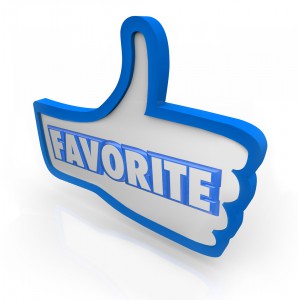
My colleague Alan Buckingham has already listed his favorite tech of the past year, and now it’s my turn. I’ve taken all sorts of new products for a spin over the past 12 months, so narrowing the selection down is actually pretty tricky. Apple disappointed me a little this year -- as the owner of an iPhone 5s I needed a big reason to upgrade to the iPhone 6, and a larger screen and Apple Pay wasn’t it. The iPhone 6 is an excellent phone, but I think I’ll hang on to the 5s for another year. Similarly, the iPad Air 2 just wasn’t different enough for me to consider that either. Thinner is a feature, not a benefit for me.
But fortunately, there was plenty of other new tech around that I did love, and here’s my top selection, in no particular order.
I finally got Google’s streaming device, and I’m a big fan. It’s great that you can cast YouTube and Chrome tabs to the big screen, but it’s the fact that you can do much more with it that really makes the dongle so worth owning. I use it to stream my own videos, and lots of other content including photos.
If you’ve just got one for Christmas, check out my guide here.
Samsung U28D590D UHD 4K 28-inch monitor
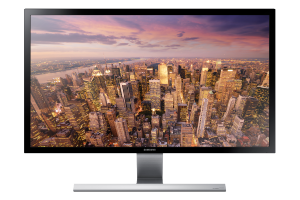 I’m a lover of multi-monitor setups, and the U28D590D is the centerpiece of a three screen strip that utterly dominates my desk. But Samsung’s UHD 4K monitor on its own is a fantastic piece of kit. It offers a native resolution of 3840×2160 pixels and has a very clean design. On the rear are two HDMI 1.4 sockets and a Display Port 1.2 input, and you really need to be using the latter to get the most from it. HDMI gives you 30fps, but Display Port doubles that. I wasn’t sold on the idea of 4K to be honest, but the U28D590D has definitely changed my mind.
I’m a lover of multi-monitor setups, and the U28D590D is the centerpiece of a three screen strip that utterly dominates my desk. But Samsung’s UHD 4K monitor on its own is a fantastic piece of kit. It offers a native resolution of 3840×2160 pixels and has a very clean design. On the rear are two HDMI 1.4 sockets and a Display Port 1.2 input, and you really need to be using the latter to get the most from it. HDMI gives you 30fps, but Display Port doubles that. I wasn’t sold on the idea of 4K to be honest, but the U28D590D has definitely changed my mind.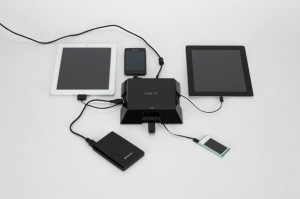 I know I’ve banged on about this quite a lot over the past few months, but the Hub It sync and charging station is a great piece of kit. It sits on my desk and lets me charge everything I could possibly want to without giving it a second thought. Its modular nature -- you choose which connectors (in addition to USB) it offers -- means it’s highly customizable. If you have lots of gadgets that require different charging methods -- mini USB, micro USB, Lightning, Qi wireless charging -- it’s superb.
I know I’ve banged on about this quite a lot over the past few months, but the Hub It sync and charging station is a great piece of kit. It sits on my desk and lets me charge everything I could possibly want to without giving it a second thought. Its modular nature -- you choose which connectors (in addition to USB) it offers -- means it’s highly customizable. If you have lots of gadgets that require different charging methods -- mini USB, micro USB, Lightning, Qi wireless charging -- it’s superb.Gigaset QV830 8-inch Android tablet
Budget tablets have never appealed to me, purely because if you’ve got a decent tablet, the failings of the cheaper model will be amplified in comparison. But Gigaset’s 8-inch tablet is a decent offering, at a very affordable price (£69.99), and I find it useful as a backup device.
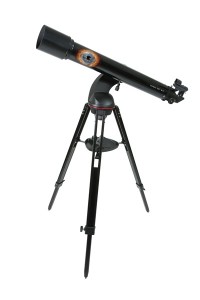 Celestron Cosmos 90GT Wi-Fi refractor telescope
Celestron Cosmos 90GT Wi-Fi refractor telescopeI’ve always been fascinated with astronomy, but never owned a decent telescope -- until now. The Cosmos 90GT is a great beginners scope that ties in with the Cosmos TV show, but comes from a respected telescope manufacturer. If you’re a lazy would-be astronomer who wants to see the stars without having to spend hours hunting for them, then this is ideal. You hook it up to your tablet, configure it, then use the app to control everything. Locate a celestial body on the app, and tap it to send the telescope there.
The product comes with its own Wi-Fi, so you can connect to it, and control it, from anywhere.
Others
Google Cardboard is a fun project that lets you turn your smartphone into a cheap virtual reality setup that can give you motion sickness and headaches, but which does just enough to get you excited about owning an Oculus Rift. I don’t use my cardboard creation very often, but I do enjoy dipping into the virtual worlds it makes possible.
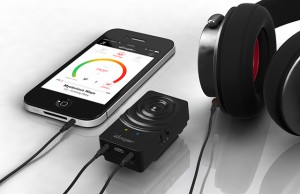 Woojer, a wearable subwoofer that lets you feel sound, is similarly something I don’t use much, but which I do get more use from than I perhaps would have expected to.
Woojer, a wearable subwoofer that lets you feel sound, is similarly something I don’t use much, but which I do get more use from than I perhaps would have expected to.Finally, Jawbone UP24 deserves a mention. I’ve only had the wearable since Christmas (it was a present) but as someone who likes to track their activity, I’m really appreciating it so far. The sleep tracking is a little iffy -- I spent over an hour being unable to get back to sleep last night, and my lack of movement had the device declaring I was experiencing deep sleep at that point, although of course there’s no way for it to be able to tell the difference. Shortcomings aside, it’s a good little tracker.
What new tech (hardware or software) have you acquired that you love this year?
Photo Credit: iQoncept /Shutterstock
-

Santa brought you a Chromecast? Here's what to do first
Publié: décembre 25, 2014, 12:50pm CET par Wayne Williams
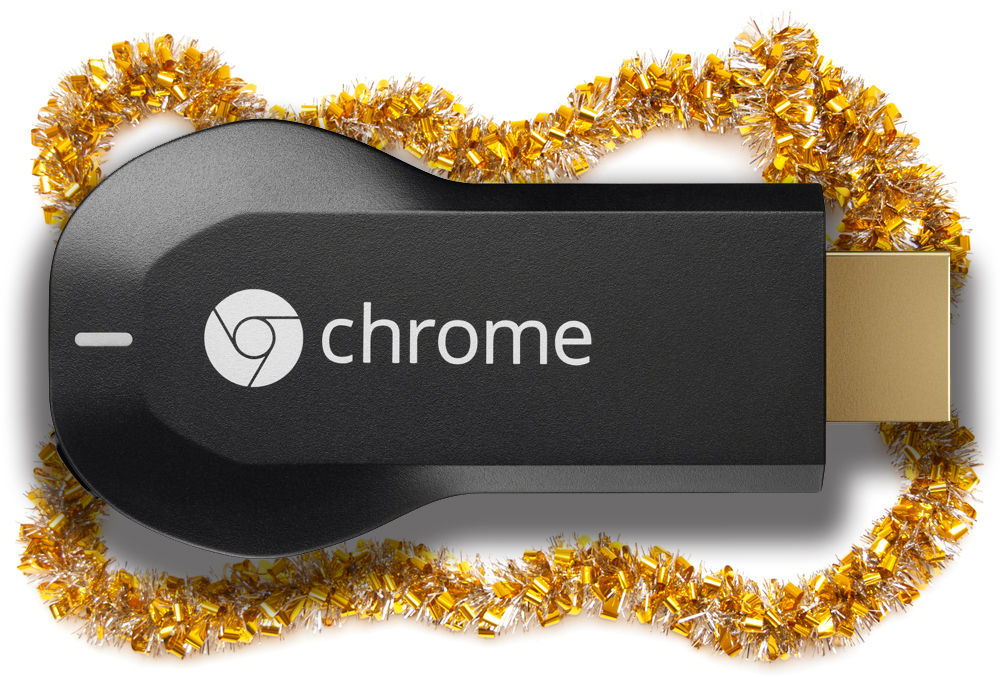
Google Chromecast is the perfect stocking filler -- it’s small, affordable, and guaranteed to be a hit with anyone who receives it as a gift this holiday season. Google is continuing to bolt on features (most recently it added a guest mode), so you’ll be able to do even more with it throughout the coming year.
The tiny powered dongle plugs into your TV set and lets you watch streaming video from the likes of YouTube, Hulu Plus, HBO Go, BBC iPlayer, Netflix, and Google Play. You can even 'cast' content from your Chrome browser on to the big screen, and play your own videos.
Get Set up
To use the Chromecast you’ll need a TV with a spare HDMI port, a nearby power socket -- or a USB port on your TV -- a Wi-Fi connection, and a PC or Mac, or smartphone or tablet.
Plug the power cable into the Chromecast and optionally attach the included HDMI Extender. Plug the Chromecast into a spare HDMI port on your TV, and then switch to the relevant TV input.
Go to chromecast.com/setup on a phone, tablet or laptop, and follow the instructions for your device. There are Chromecast apps for Android and iOS.
Launch the Chromecast app and accept the terms. The name of the Chromecast should match that displayed on your TV screen. Tap Set-Up and the app will connect to your Chromecast and display a pairing code. Assuming they match, tap 'I see the code'.
Give your Chromecast a memorable name, and tap Set Name. Enter the password details for your Wi-Fi network. The dongle will connect to your network and automatically update itself.
Get casting
You can cast from Chrome and various apps, but the best way to test out the Chromecast is from YouTube. Start a video playing on your smartphone or tablet, then tap the Chromecast icon at the top of the page and select your Chromecast name. After a brief pause the video will start playing on your TV. You can queue up multiple videos and watch them in sequence.
Next, try casting a tab from Chrome. Install the Google Cast extension and browse the web as normal. To cast a page, click or tap the Chromecast button at the top of the browser. You can adjust the quality of the display by clicking or tapping the Chromecast button and then selecting Options. You can choose between Extreme (720p high bitrate), High (720p), and Standard (480p) definition.
As well as casting YouTube videos and web pages, Chromecast can mirror an Android device’s screen on your TV, and with the right apps, cast audio, video and photos stored on your computer or mobile device. It can also be used to play simple games, such as Monopoly Dash, Big Web Quiz and Just Dance Now.
Apps
A lot of apps come with Chromecast support, and Google has a list of them here. Cast Store for Android is also worth an install. Reddit has a comprehensive (and regularly updated) list of Chromecast apps for iOS, Android and Chrome. Go here.
Photo Credit: andrej_sv/Shutterstock
-

Happy holidays from all at BetaNews
Publié: décembre 24, 2014, 8:09pm CET par Wayne Williams

A little last minute gift shopping and panic wrapping aside, we're all ready for Christmas here at BetaNews. The tree is trimmed, the eggnog is flowing, and we’ve got all the Santa tracking apps we need fired up and locked in on the jolly big man and his reindeer-powered sleigh.
Hopefully you're similarly prepared for the big day tomorrow, (even if you don't celebrate Christmas, we trust you've got something fun in mind to do) and we'd like to take this opportunity to wish you a merry Christmas. We’re crossing our fingers that you receive all the tech treats you're hoping for.
To help you get the most from any new tech you find under the tree, we've got some special guides written for products like Surface Pro 3, Amazon Fire TV, and Google Chromecast, which will be appearing on the site throughout the day tomorrow. So if you find yourself at a loose end, or are browsing the web on your new tablet or smartphone, be sure to stop by.
It’s also worth checking out our round up of the top news stories of 2014, which is packed with interesting reads and useful guides to follow.
Happy holidays all!
-

BetaNews 2014 -- the top news stories, editorial and guides from the past year
Publié: décembre 23, 2014, 3:50pm CET par Wayne Williams

It’s that time of the year again when news sites and search engines look back at the stories and events that shaped the year. The top stories on BetaNews are obviously going to be different -- mostly -- from the top stories on other sites because we focus on technology. So in other words don’t expect Kim Kardashian "breaking" the internet to appear anywhere in our list. Although that’s not to say she won’t make an appearance somewhere…
Because BetaNews offers a mix of content, we’ve put together three top 10 lists -- News, Opinion/Editorial, and Guides. With news, it's not necessarily the biggest stories of year that make the list, but rather the content that was viewed the most. All three lists are presented, as ever, in reverse order.
News
- 100,000 mostly dull photos leak online -- behind the 'Snappening' hype
- Roku adds DirecTV channels to its lineup
- Microsoft announces Wireless Display Adapter -- better than Chromecast?
- Sorry Android users, Apple does it again -- iPhone 6 and 6 Plus set new preorder record
- Apple announces iPhone 6 and iPhone 6 Plus
- Microsoft takes the wraps off Windows 10 -- No, seriously
- Say goodbye to invites -- OnePlus One will go up for pre-order
- Microsoft Office comes to Google's Chrome OS -- now who's Scroogled?
- Oculus Rift launch date officially confirmed for 2015
- The Fappening
The leak of celebrity nudes actually lead to several top stories, including news that Reddit had banned Fappening subreddits and 4chan had introduced a DMCA policy. The similar Snappening leak also proved popular, sneaking in as our tenth top story. Oh, and yes Kim Kardashian was included in the Fappening leaked photos.
Guides
- How to install Windows 10 Technical Preview on Oracle VirtualBox
- Windows 8.1 on 2013 Apple MacBook Air -- doable, but not a great experience
- How to create a bootable OS X 10.9 Mavericks USB drive
- Run Windows 8 or 8.1 directly from a USB drive on any computer -- for free
- The BEST Start button and menu choices for Windows 8.1
- How To: Use Outlook.com as a free custom domain email host
- How to download and install the Windows 8.1 ISO -- using a Windows 8 or 8.1 key
- How to continue getting free security updates for Windows XP -- until 2019
- The best tools for removing malware
- How to create a bootable Windows 8.1 Update USB drive
Guides for Windows 8.1 proved very popular, as you’d expect, and Windows XP users still clinging on to the aging OS jumped at the chance of prolonging its life with a sneaky workaround. A Windows 10 guide comes in at number 10, fittingly enough. It’s fair to say, there will be plenty of guides for the next version of Microsoft’s OS in 2015’s round up.
Opinion/Editorial
- Do NOT buy a Blackberry Passport until you read this
- Windows 8.1 Update is the final nail in the coffin
- You can have Apple iPhone 5s, I'll take HTC One M8
- 10 things you should know before buying iPhone 6 or 6 Plus
- 10 things a Windows Phone 8 user misses about Android
- Windows XP home users should upgrade to Linux -- not Windows 8.1
- Windows Storage Spaces and ReFS: Is it time to ditch RAID for good?
- Why Office 365 beats hosted Exchange for small business email
- Is 2014 the year you cut the cord to cable and satellite?
- From Google Apps to Office 365: Why my company ditched Google
'Switching' stories proved very popular -- whether it was jumping from Google Apps to Office 365, moving from XP to Linux, or simply cutting the cord to cable and satellite, which suggests readers are always keen to find better alternatives to the products and services they currently use.
So that was our top stories for the year. What tech news/launches were 2014 highlights for you?
Photo credit: marekuliasz/Shutterstock
-

BetaNews 2014 -- the top news stories, editorials and guides from the past year
Publié: décembre 23, 2014, 3:50pm CET par Wayne Williams

It’s that time of the year again when news sites and search engines look back at the stories and events that shaped the year. The top stories on BetaNews are obviously going to be different -- mostly -- from the top stories on other sites because we focus on technology. So in other words don’t expect Kim Kardashian "breaking" the internet to appear anywhere in our list. Although that’s not to say she won’t make an appearance somewhere…
Because BetaNews offers a mix of content, we’ve put together three top 10 lists -- News, Opinion/Editorial, and Guides. With news, it's not necessarily the biggest stories of year that make the list, but rather the content that was viewed the most. All three lists are presented, as ever, in reverse order.
News
- 100,000 mostly dull photos leak online -- behind the 'Snappening' hype
- Roku adds DirecTV channels to its lineup
- Microsoft announces Wireless Display Adapter -- better than Chromecast?
- Sorry Android users, Apple does it again -- iPhone 6 and 6 Plus set new preorder record
- Apple announces iPhone 6 and iPhone 6 Plus
- Microsoft takes the wraps off Windows 10 -- No, seriously
- Say goodbye to invites -- OnePlus One will go up for pre-order
- Microsoft Office comes to Google's Chrome OS -- now who's Scroogled?
- Oculus Rift launch date officially confirmed for 2015
- The Fappening
The leak of celebrity nudes actually lead to several top stories, including news that Reddit had banned Fappening subreddits and 4chan had introduced a DMCA policy. The similar Snappening leak also proved popular, sneaking in as our tenth top story. Oh, and yes Kim Kardashian was included in the Fappening leaked photos.
Guides
- How to install Windows 10 Technical Preview on Oracle VirtualBox
- Windows 8.1 on 2013 Apple MacBook Air -- doable, but not a great experience
- How to create a bootable OS X 10.9 Mavericks USB drive
- Run Windows 8 or 8.1 directly from a USB drive on any computer -- for free
- The BEST Start button and menu choices for Windows 8.1
- How To: Use Outlook.com as a free custom domain email host
- How to download and install the Windows 8.1 ISO -- using a Windows 8 or 8.1 key
- How to continue getting free security updates for Windows XP -- until 2019
- The best tools for removing malware
- How to create a bootable Windows 8.1 Update USB drive
Guides for Windows 8.1 proved very popular, as you’d expect, and Windows XP users still clinging on to the aging OS jumped at the chance of prolonging its life with a sneaky workaround. A Windows 10 guide comes in at number 10, fittingly enough. It’s fair to say, there will be plenty of guides for the next version of Microsoft’s OS in 2015’s round up.
Opinion/Editorial
- Do NOT buy a Blackberry Passport until you read this
- Windows 8.1 Update is the final nail in the coffin
- You can have Apple iPhone 5s, I'll take HTC One M8
- 10 things you should know before buying iPhone 6 or 6 Plus
- 10 things a Windows Phone 8 user misses about Android
- Windows XP home users should upgrade to Linux -- not Windows 8.1
- Windows Storage Spaces and ReFS: Is it time to ditch RAID for good?
- Why Office 365 beats hosted Exchange for small business email
- Is 2014 the year you cut the cord to cable and satellite?
- From Google Apps to Office 365: Why my company ditched Google
'Switching' stories proved very popular -- whether it was jumping from Google Apps to Office 365, moving from XP to Linux, or simply cutting the cord to cable and satellite, which suggests readers are always keen to find better alternatives to the products and services they currently use.
So that was our top stories for the year. What tech news/launches were 2014 highlights for you?
Photo credit: marekuliasz/Shutterstock
-

Microsoft's year-end sale delivers big savings on PCs, tablets, and more
Publié: décembre 23, 2014, 10:35am CET par Wayne Williams

If you’re thinking of treating yourself to a new PC or a Windows tablet, then Microsoft has some special deals that might be of interest. Its end of year sale offers some decent savings on PCs and tablets from the likes of Lenovo, Acer, HP and ASUS.
You can also pick up the HP Stream 7 Signature Edition Tablet for just $99, which is even more of a bargain than it first seems as it comes with Office 365 Personal, which by itself is worth $69.99.
Other deals in the sale include $200 off the price of the Lenovo Flex 2 15 Signature Edition 2 in 1 PC (now $499), $50 off the ASUS VivoTab 8 M81C-B1-MSBK Signature Edition Tablet (now $149), which also comes with Office 365 Personal, and $200 off the cost of the ASUS Transformer Book Flip TP300LA Signature Edition Laptop (now $599).
You can also get $350 off the price of the Lenovo ThinkPad Yoga i7 256GB Signature Edition 2 in 1 PC (now $1299), and $300 off a Razer Blade 256GB Signature Edition Gaming Laptop (now $2,099)
Browse the full range of year-end offers here.
Have you picked up any bargains recently?
Photo Credit: A and N photography / Shutterstock
-

Nokia isn't totally abandoning HERE on Windows Phone, but Android and iOS will be its priority
Publié: décembre 18, 2014, 5:54pm CET par Wayne Williams

Nokia’s HERE suite of driving and navigation apps first made its appearance on Windows Phone, and although it’s now being developed for other platforms, for many it remains best associated with Microsoft’s mobile operating system.
However, now that Nokia is no longer tied to Windows Phone, the Finnish company’s interest in developing for that platform is waning, and it will in future be focusing on Android and iOS -- which have a much larger user base.
Talking to Finnish publication DigiToday, Udo Szabo, Director of Product Marketing at HERE, said:
When we did Nokia phones, our goal was slightly different. Now we are developing applications on the basis of a realistic market. Microsoft will pay our maps license fees and is responsible for application development.
That suggests Nokia has handed over development of the Windows Phone version of HERE to Microsoft, but it turns out that’s not (entirely) the case. Nokia has since released a statement clarifying its role in HERE development on Windows Phone, stating:
We have noticed some discussions in the blogosphere about HERE on Windows Phone. We want to clarify that we are committed to providing great products and consumer experiences for Windows based phones. We will continue to support our HERE apps to ensure that they will be compatible with future versions of Windows.
Notice Nokia didn’t say it would be developing the apps, only that it would continue to support them. In other words, keep them ticking over (and keep its options open).
Exactly what all this will mean for HERE on Windows Phone is uncertain, but I’ll guess we’ll find out in due course.
Nokia has already brought HERE to Android, and the iOS version is expected to arrive in early 2015.
Photo Credit: Sabphoto/Shutterstock
-

Canon i-SENSYS MF229dw: A great value multifunction printer for home and small business [review]
Publié: décembre 18, 2014, 1:41pm CET par Wayne Williams
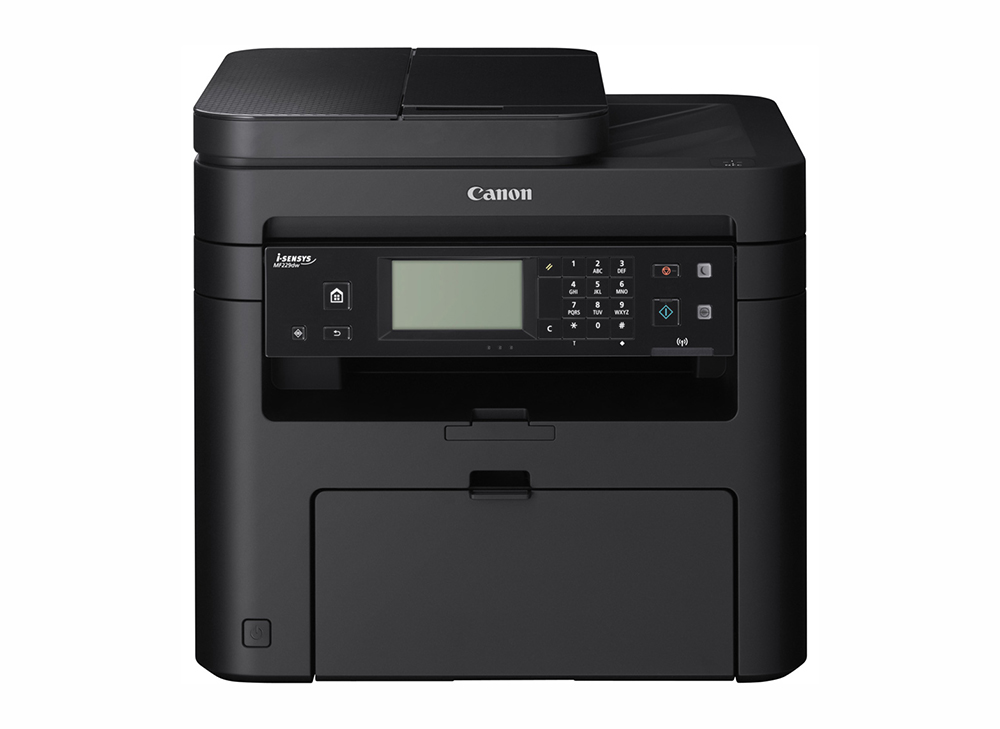
There’s no shortage of cut-price mono laser printers on the market, but the multifunction Canon i-SENSYS MF229dw is the perfect example of why it’s worth paying a little extra to get a printer that can do everything you’d want it to, and more besides.
Obviously it’s a mono printer, so the one thing it can’t do is output color pages, but aside from that it can print single and double-sided, scan (in 24-bit color), copy pages, and fax documents. It’s a wireless printer, and you can send photos and documents to print directly from iOS and Android devices.
Setting it up is very easy, you just remove all the orange tape and tabs, install the software, power it up and then use the touch sensitive panel on the front to configure everything and connect it to your wireless network (Wi-Fi 802.11 b/g/n). This last step is done through the panel, but the process is quick and painless. You can also connect the printer via a wired network (10/100 Base-T Ethernet). You have to choose one or the other networked methods, not both, and wired LAN is the default.
The angle of the operation panel on the front can be adjusted to suit, and once it’s all up and running, you can use the touch screen to copy, scan and fax documents, access the address book, and adjust various settings.
Text is output at 600 x 600 dpi, and is pin sharp. The quality of photos is similarly impressive at up to 1200 x 1200 dpi with image refinement.
Canon quotes printing speeds at 27 pages a minute, and outputting a 27 page single-sided document took exactly that. Printing the same document in duplex took one minute and 45 seconds. The Quick First Print feature reduces the waiting time for the initial page, which is a great addition.
The scanner has an optical resolution of 600 dpi and this can be stretched to 9600 dpi with enhancement. You have the choice of flatbed and a 50 sheet Duplex Automatic Document Feeder (DADF), and the flatbed can expand to take thicker material, such as books and brochures. Quality is very good, and A4 photos took on average 7 seconds to scan in full color at 300 dpi, and 17 seconds at 600 dpi.
The MF229dw works well as a photocopier, and can enlarge and reduce documents (arrange multiple documents on one sheet, for example), copy one sided documents on to both sides of the paper, and collate your copies. There is a choice of copy modes -- Text, Text/Photo, Text/Photo+, and Photo. Copying an A4 photo in Text/Photo took 9 seconds, and 15 seconds in Photo. The difference in quality between modes is very noticeable.
Faxing is still a thing for some businesses, and the MF229dw’s Super G3 fax can send a page every three seconds, and store up to 256 pages in memory. There are four one-touch dials and 100 coded dials.
There’s very little to dislike about the MF229dw. It’s a tad on the chunky side perhaps, Gigabit networking would be good and 256MB memory isn’t exactly generous, but those are minor complaints. It’s a very capable multi-function model that offers superb print and scan quality, and which I can definitely recommend without reservation.
If you’re looking for a new, stylish and versatile office printer, the MF229dw should be near the top of your list.
It’s available from Ebuyer for £241, including delivery.
Technical Specifications
General Device Type Fax / copier / printer / scanner Fax Type Plain paper Printing Technology Laser - monochrome Monthly Duty Cycle (max) 10000 pages Display 6 lines Display Features Touch screen PC Connection Availability Yes PC Connection LAN, Wi-Fi(n), USB 2.0 Memory Standard Memory 256 MB Copying Max Copying Speed Up to 27 ppm Max Copying Resolution Up to 600 x 600 dpi Grey Scale Half-Tones 256 Max Document Enlargement 400% Max Document Reduction 25% Maximum Copies 99 Exposure Modes Text, photo, text and photo Automatic Duplexing Yes Copying Features Toner Save, 2 on 1, 4 on 1, ID Card Copy Printing Max Printing Resolution Up to 1200 x 1200 dpi Max Printing Speed Up to 27 ppm Printer Drivers / Emulations UFRII LT Image Enhancement Technology Automatic Image Refinement Automatic Duplexing Yes First Print Out Time B/W 6 sec Scanning Automatic Duplexing Yes Optical Resolution 600 x 600 dpi Interpolated Resolution 9600 x 9600 dpi Color Depth 24 bit Fax Machine Compatibility Super G3 Max Transmission Speed 33.6 Kbps Fax Resolutions 200 x 400 dpi, 200 x 200 dpi, 200 x 100 dpi Total Memory Capacity Up to 256 pages PC Faxing Yes Fax Machine Features Error Correction Mode (ECM) Yes One Touch Dialing 4 station(s) Speed Dialing 104 station(s) Broadcast Transmission 114 stations Features Fax forwarding, Distinctive Ring Pattern Detection (DRPD), automatic redialing, remote reception, Dual Access, fax activity reports Document & Media Handling Min Original Size 127 x 140 mm Max Original Size A4 (210 x 297 mm), Legal (216 x 356 mm) Original Type Sheets Document Feeder Capacity 50 sheets Min Media Size 76.2 x 127 mm Max Media Size A4/Legal Min Media Weight 60 g/m2 Max Media Weight 163 g/m2 Supported Media Type Transparencies, envelopes, plain paper, labels, recycled paper, heavy-weight paper Supported Media Sizes ANSI A (Letter) (216 x 279 mm), Legal (216 x 356 mm), Executive (184 x 267 mm), A4 (210 x 297 mm), A5 (148 x 210 mm), B5 (176 x 250 mm), Statement (139.7 x 215.9 mm), 76.2 x 127 mm, Oficio (216 x 343 mm) Supported Envelope Sizes International DL (110 x 220 mm), Com-10 (105 x 241 mm), International C5 (162 x 229 mm), Monarch (98.4 x 190.5 mm) Standard Media Capacity 250 sheets Bypass Feeder Capacity 1 sheets Output Trays Capacity 100 sheets Document & Media Handling Details Input tray - 250 sheets size: 76.2 x 210 mm - Legal (216 x 356 mm)/A4 (210 x 297 mm) weight: 60 g/m2 - 163 g/m2 � Bypass tray - 1 sheets size: 76.2 x 127 mm - Legal (216 x 356 mm)/A4 (210 x 297 mm) weight: 60 g/m2 - 163 g/m2 � Output tray - 100 sheets � ADF - 50 sheets size: 127 x 140 mm - Legal (216 x 356 mm)/A4 (210 x 297 mm) Speed Details Printing : up to 27 ppm ( A4 ) - B/W � Copying : up to 27 ppm ( A4 ) - B/W Connections Interfaces 1 x USB 2.0 - 4 PIN USB Type B � 1 x LAN - RJ-45 Operating System Support MS Windows XP, Linux, MS Windows Server 2003, MS Windows 7, MS Windows Vista, MS Windows Server 2008, MS Windows Server 2008 R2, Apple Mac OS X 10.5.8 or later, MS Windows Server 2012, Windows 8, Android, iOS, Windows 8.1, MS Windows Server 2012 R2 Software Included Drivers & Utilities, Presto! PageManager, Canon MF Toolbox Power Voltage Required AC 230 V ( 50/60Hz ) Power Consumption Operational 1300 Watt Power Consumption Standby 5.8 Watt Power Consumption Sleep 1.7 Watt Miscellaneous First Copy Out Time B/W 9 sec Consumables Included 1 x Cartridge ( black ) - up to 1700 pages Dimensions & Weight Width 39 cm Depth 44.8 cm Height 36 cm Weight 13.1 kg Environmental Parameters Sound Emission 43 dB (idle) / 51 dB (operating) Humidity Range Operating 20 - 80% (non-condensing) -

Get a classic Start menu in Windows 10
Publié: décembre 17, 2014, 2:09pm CET par Wayne Williams
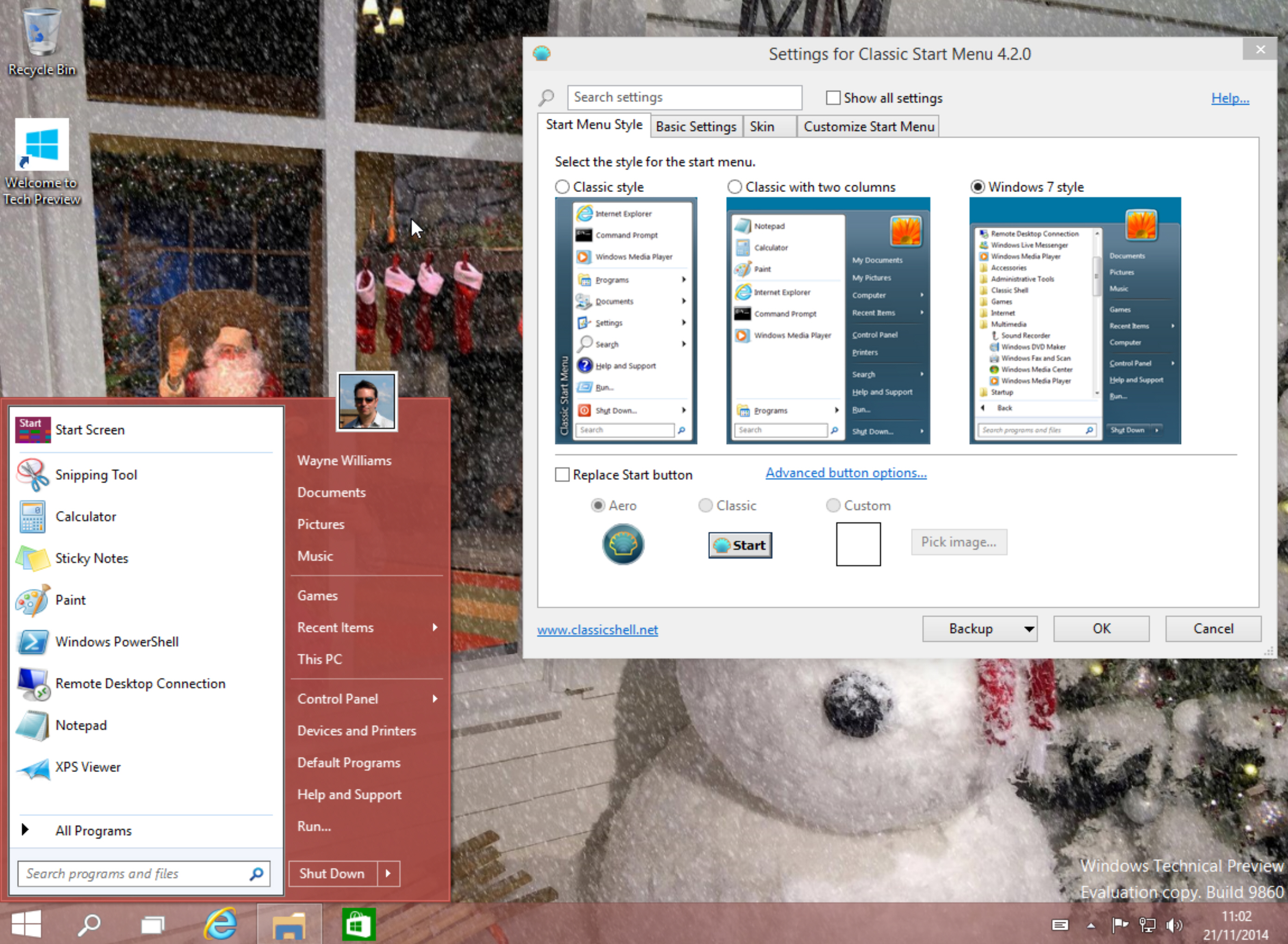
Windows 10 is very much a work in progress, but one feature that’s definitely going to be around in the final release is the Start menu. Microsoft has done a clever job of blending the traditional Start menu with the divisive Start screen found in Windows 8.x. I’m a big fan of this approach, and the menu is customizable too, so if you really, really hate the tiles, you can them turn off.
However, for some people nothing less than a classic Windows 7 style Start menu is going to be acceptable. If you count yourself in that number, the good news is you can now get a traditional Start menu in Windows 10 thanks to Classic Shell.
Beta 4.2.0 has a short list of improvements, including better Windows 10 support. This means you can now use it in the Technical Preview to replace the built-in Windows Start menu with one of those offered in Classic Shell. You can choose from Classic Style, Classic with Two Columns, and Windows 7 Style.
When installed it replaces the Start menu but keeps the Windows 10 Start button, although you can change that to something else if you wish.
Classic Shell is highly customizable, and the beta release gains a new Windows 10 Settings tab, but at the moment the options offered appear identical to those found in the Windows 8 version.
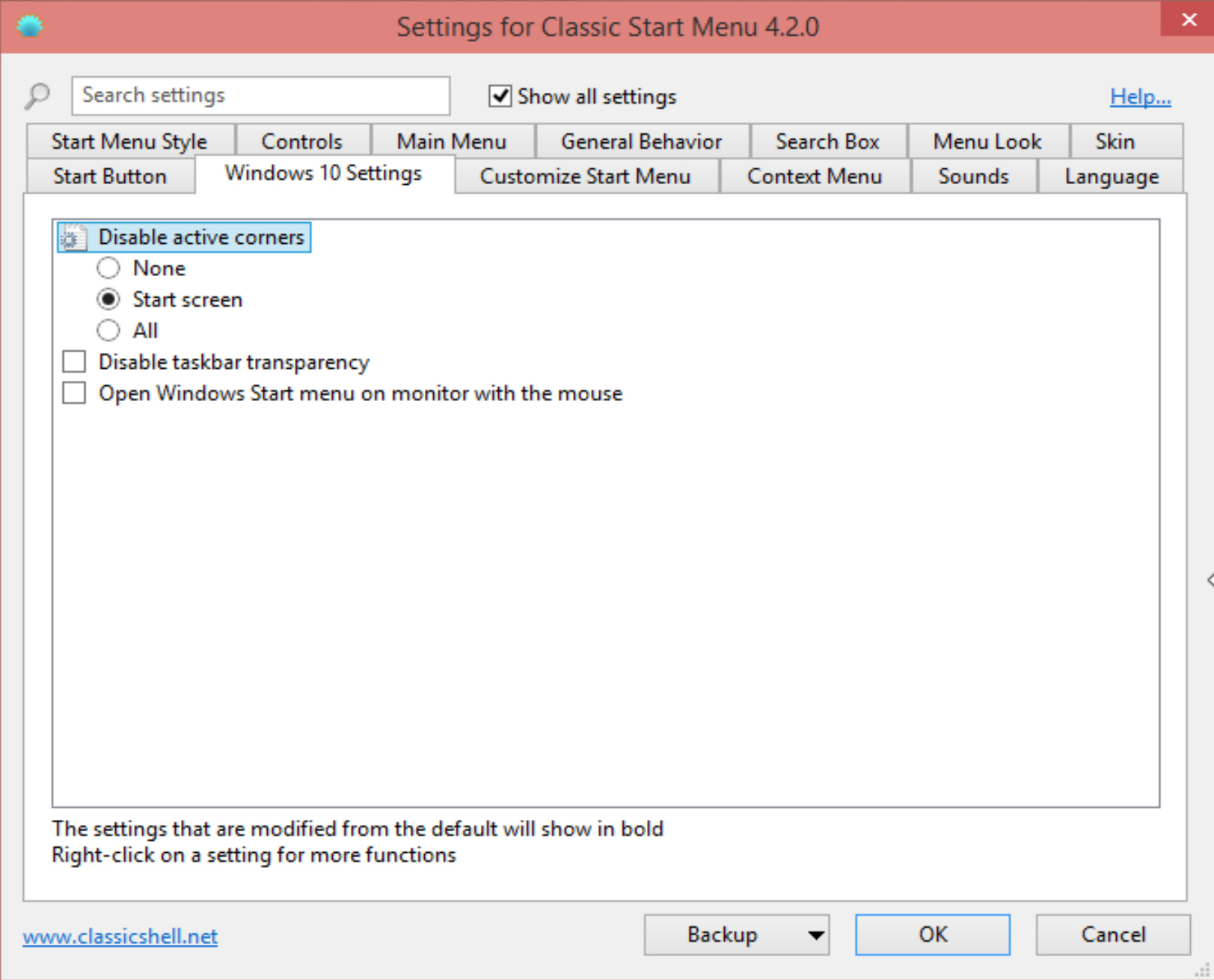
What's your view of the Windows 10 Start menu? Do you like what Microsoft has done, or do you prefer the Classic Shell choices?
-

BuQu's PowerArmour case protects iPhone 6, doubles battery life
Publié: décembre 17, 2014, 12:04pm CET par Wayne Williams
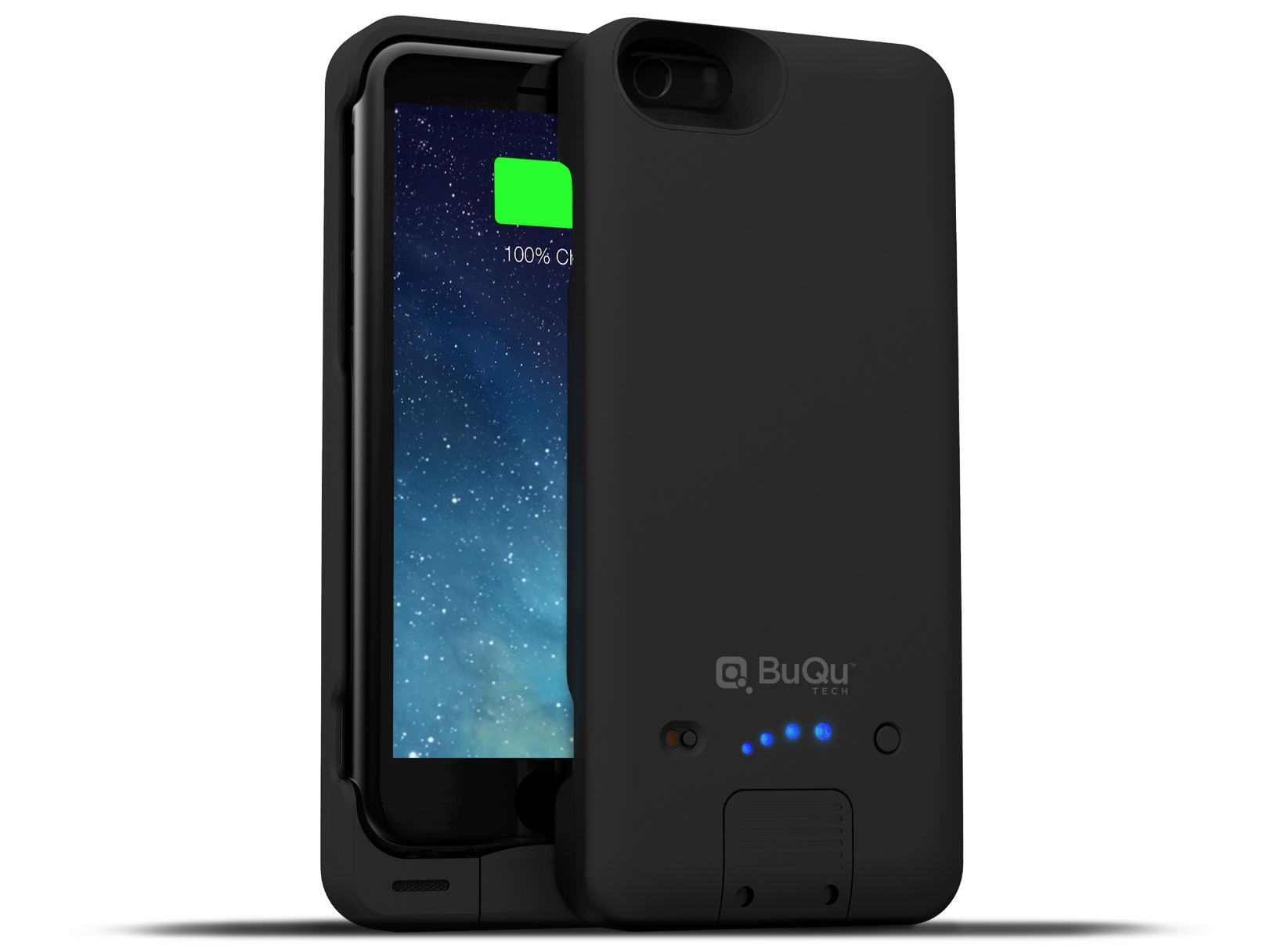
There are just two things I’d improve about Apple’s new iPhone -- its durability and battery life. Both are reasonable, but could be better. This is where BuQu’s PowerArmour case comes in. It will protect your device from drops, and provide up to 100 percent extra battery life. What’s not to love?
The Apple certified "Made for iPhone" case has an integrated 2,800mAh battery that keeps your phone charged at all times, and is sourced from the same manufacturer that provides batteries for Apple’s devices so you know it’s going to last.
The obvious concern with bolting a battery on to the back of the iPhone 6 is it will increase the bulk of Apple’s device, but that’s not the case as it’s impressively slimline. There’s a power saving on/off switch, an LED "fuel gauge" that shows the available battery power, and a slide lock connector that makes it easy to insert and secure your phone without scratching it.
The patented unibody exterior is designed to protect the phone from accidental damage and drops.
The package includes a micro USB cable for fast charging of the iPhone 6 and the case’s internal battery. There’s also an extended-reach audio adapter cable for connecting to headphones or speakers.
The BuQu Tech PowerArmour for iPhone 6 is available now for $79.99 at BuQuTech.com.
-

Hub It can now charge your devices wirelessly
Publié: décembre 17, 2014, 10:02am CET par Wayne Williams
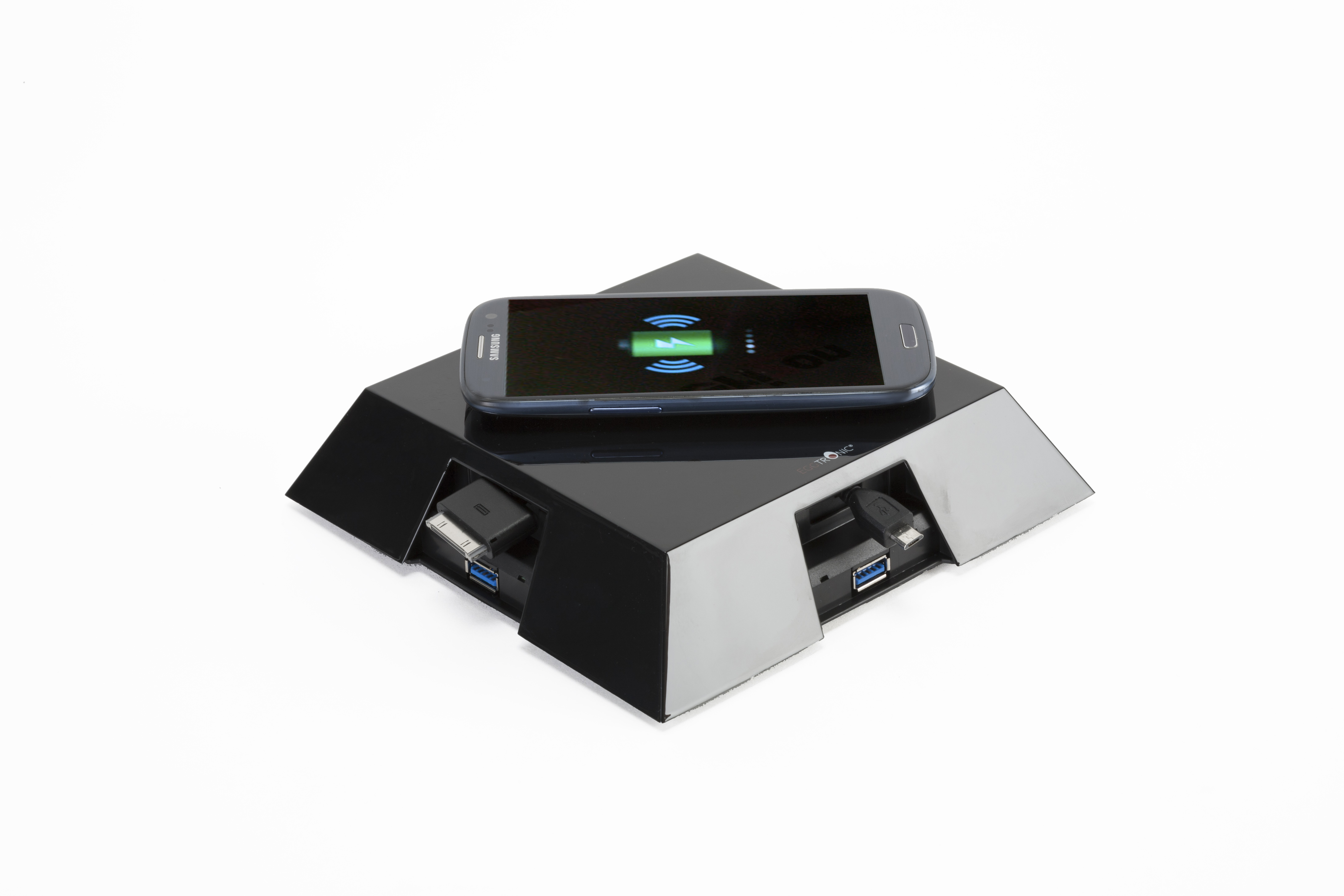
I reviewed Hub It a couple of weeks ago, and described it as an "essential, fully customizable sync and charging station for all your devices". I liked it so much in fact, I persuaded its creators, Eggtronic, to giveaway two to BetaNews readers. Enter here (but be quick, the giveaway ends soon).
The product comes with three USB 3.0 ports, as well as connectors for Micro USB, Mini USB, Apple 30 pin and Apple Lightning, but you’re not limited to those options. The station makes use of hot switchable cartridges so you can choose exactly which connectors it offers. And from today, you can add Qi wireless charging to the list.
The Eggtronic Qi Wireless Charger Cartridge uses the standard developed by the Wireless Power Consortium. This employs electromagnetic induction technology to produce a magnetic field that in turn generates an electric current to charge the batteries in devices placed on the charging pad. The new cartridge is compatible with all smartphones that support the Qi standard. The beauty of Hub It’s modular system is that additional Qi wireless charging cartridges can be added, allowing you to charge multiple devices wirelessly at the same time.
"It’s exhilarating to see the addition of a new accessory to the Hub It cartridge’s library. With Qi wireless charging compatibility, Hub It continues to evolve and offer the latest charging technology to its customers" says Igor Spinella Founder and CEO of Eggtronic.
The following HUB IT cartridge connectors are available now at amazon.com.
- Qi Wireless Charger
- Micro USB
- Mini USB
- Apple Lightning
- Apple Dock 30 pin
- Galaxy TAB
- Nokia 2
- Nokia 1
- Digital Cameras
- Nintendo DSL
- Nintendo DSi
- Sony PSP
-

AOC's new computer screens can reduce eye fatigue and retinal stress
Publié: décembre 16, 2014, 12:56pm CET par Wayne Williams
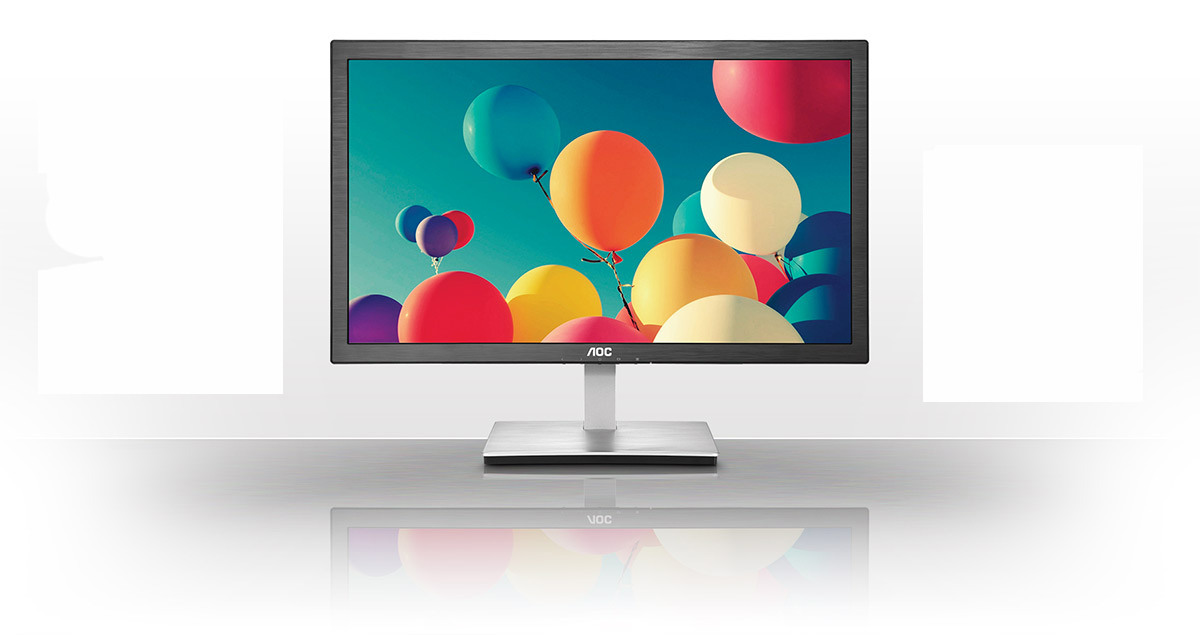
If you sit in front of a computer screen all day, as so many of us do, there’s the risk of developing eye fatigue and headaches. Taking regular breaks can help, but you have to remember to do so.
Monitor-maker AOC says it has found a way to reduce the risks of spending so much time in front of computer screens and is debuting two new displays which offer Anti-Blue Light and Flicker FREE technology that it claims can combat eye-related issues such as retinal stress and macular degeneration.
According to studies, regular exposure to the blue light of display devices causes retinal stress, leading to age-related macular degeneration, or ARMD. AOC says its Anti-Blue Light technology, which is based on a special LED technology which shifts the wavelength peak from harmful 450 nm to a safer 460 nm, reduces harmful blue light by over 90 percent without affecting color fidelity. In addition, the Flicker FREE technology helps reduce eye fatigue.
This technology is included in two models, the 22 inch E2276VWM6 and the 24 inch E2476VWM6. The two screens offer 1920 x 1080 Full HD resolution, vibrant, bright colors and an HDMI connector with MHL 2.0 (Mobile High-Definition Link) functionality, so Android smartphones and tablets can be mirrored directly onto the larger screens. Both models have short pixel response times of 1 ms and 2 ms.
The E2276VWM6 and E2476VWM6 with Anti-blue Light and Flicker FREE are available in UK stores now for £109 and £129 respectively.
-

BT in talks to acquire EE for £12.5 billion
Publié: décembre 15, 2014, 7:33pm CET par Wayne Williams
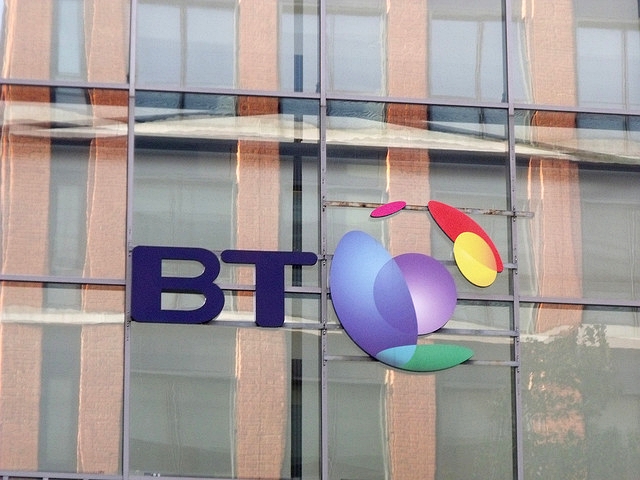
There’s been plenty of speculation over the past few weeks as to which mobile provider British Telecom was sweetest on -- EE or O2 (its ex) -- but today we learn the object of BT’s affection is definitely the Deutsche Telekom and Orange S.A joint-venture, as the telecoms giant confirms that it has entered into "exclusive negotiations" to buy EE for £12.5 billion.
There’s a long, long way to go before the companies tie the knot, but if things go ahead, part of the purchase price will be paid in BT shares. Upon successful completion of the proposed transaction Deutsche Telekom stands to own a 12 percent stake in the company, and Orange would gain 4 percent.
"We firmly believe that convergence is the future of telecommunications in Europe. Customers want fixed-mobile converged services from a single provider. The proposed transaction with BT offers the chance to further develop our superbly positioned mobile business engagement in the UK and to take part in the outstanding opportunities of an integrated business model," said Thomas Dannenfeldt, Chairman of EE’s Board of Directors and CFO of Deutsche Telekom.
Commenting on the news, Dominic Baliszewski, telecoms expert at broadbandchoices.co.uk said, "BT has gone full circle with the acquisition of mobile network EE, having only left the mobile space 12 years ago when it sold BT Cellnet. The trend for providers to offer the full suite of home comms services (broadband, TV, mobile, landline) is showing no sign of slowing, but UK customers have not yet embraced quad-play as enthusiastically as in other European countries, such as Spain, where quad-play is hugely successful. UK customers largely view a mobile phone as a personal purchase rather than part of their household spend so a fundamental shift in perception is needed to make quad-play the norm.
"That being said, quad-play does have the potential to save customers a great deal of money and BT in particular has the infrastructure at its disposal to offer some truly compelling pricing alongside robust coverage (both from EE's best-in-market UK mobile coverage and BT’s 5 million Wi-Fi hotspots). Throw in some tasty freebies in a similar vein to the 'free BT Sport' offer of the previous 12 months and you have a tempting proposition. This is unlikely to be the only example of consolidation we see in telecoms over the next year or so, but it is important that customers are not dazzled by the marketing surrounding Quad-Play. Bundles are cheaper because providers want to avoid customer churn, but do stay focused on what you need from a mobile phone service: quality of coverage, network speed and a generous data allowance are all just as important as how much you actually pay.
"Should this deal go ahead, millions of people who are both EE mobile customers and BT broadband/TV customers already will effectively become triple or quad play BT customers without even blinking. If you find yourself in this situation, don’t feel rushed or pressured into signing up to a new contract. BT will likely offer some very attractive customer retention deals but it is always worth taking the time to compare and understand what you need versus what you want -- especially in an increasingly complicated market".
-

What to expect in the next Windows 10 build
Publié: décembre 15, 2014, 2:32pm CET par Wayne Williams
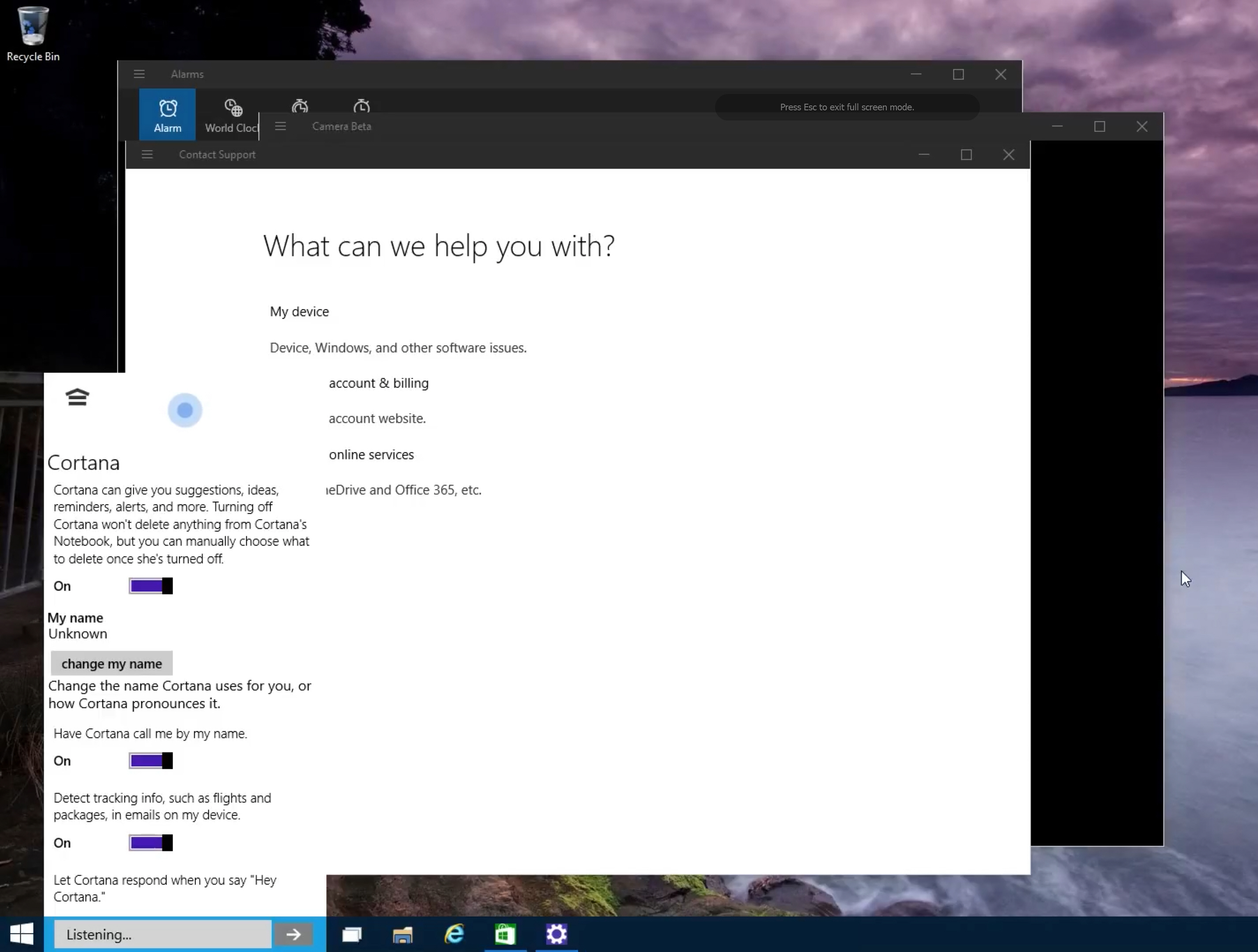
Microsoft plans to launch the next build of Windows 10 in January, and we’ll start to see some focus on the consumer side of things. The company is holding an event at its Redmond campus on January 21 to talk about the "next chapter" of the OS.
But while the tech giant isn’t releasing any new builds for a few weeks at least, there have been several leaks on the internet that reveal what we can expect to see when it does. Here’s what coming to a PC near you soon.
Build 9901 has made its way onto the internet and sports a number of big changes, including Cortana, Microsoft's personal assistant, running on the desktop. This is a feature we know is coming (even if not everyone wants it), and is available on the taskbar by default, although you can switch back to just the search button, or remove both search and Cortana from the taskbar entirely.
Cortana isn’t fully functional in the leaked build (you can speak to her but she won't listen), but it is clearly going to work very much as it does on Windows Phone and provide suggestions, ideas, reminders, alerts and so on.
The Settings app is getting a makeover and it looks as if Microsoft wants Settings to replace the Control Panel as the place to go to make changes to the OS. Go to the Windows Update section of the Control Panel, for example, and you’ll see a message that says:
This UI is deprecated. To get updates go to Settings -> Update and recovery -> Windows Update
Settings is also no longer available in Charms but built into apps and available through the Start menu.

Other new or changed apps in 9901 include Camera, Contact Support, Getting Started, Alarms, and Calculator. With Contact Support you’ll be able to speak to someone at Microsoft, and although this feature doesn’t do much at the moment (unsurprisingly there’s currently no one standing by to take your call), it looks as if it will be similar to Amazon’s Mayday.
There are new Photos and Windows Store apps (the latter has a more polished interface and music, movies and TV shows are shown next to apps) and the Xbox app has been updated as well with a brand new interface.
As you might expect, most of the changes aren’t massively different, but we’re seeing design overhauls and general UI improvements across the board. There are new animations in the TaskView switcher, for example.
Should you choose to install the leaked build yourself (and we'd only recommend you do this in a virtual environment using the likes of VirtualBox -- instructions here), be warned you won't be able to receive future updates directly as part of the Windows Insider program, although you will be able to update Windows 10 to future builds using ISOs. Once you're on an official release, you'll get updates once more.
I'm a big fan of what Microsoft is doing with Windows 10, and the latest changes show, for me at least, the company is continuing to head in the right direction. What are your thoughts on Windows 10 so far?
-

37 percent of young people have sent naked photos of themselves, often to total strangers
Publié: décembre 15, 2014, 12:46pm CET par Wayne Williams

UK-based anti-bullying charity Ditch the Label has published its annual study into how people aged 13-25 are currently engaging with (and abusing) smartphone technology. The Wireless Report (2014) reveals worrying details on the increase in the number of cyberbullying cases which includes death and physical assault threats, and exposure of information, including sharing of naked photos without the subject’s permission.
The report, which was compiled from the results of a survey advertised as being about smartphone apps (without mention of bullying, abuse or sexting) reveals some striking statistics.
- 62 percent of young people have been sent nasty private messages on a smartphone app based social network.
- 52 percent of young people who have received abuse have never reported it because they didn’t think it serious enough.
- 24 percent of young people who have sent a naked photo of themselves have had it shared without their consent.
The top apps used by cyberbullies are Grindr, Kik, and Skype. As you would expect after receiving abuse, most of the victims felt less confident and a large portion tried to change something about themselves. One in four even turned to self-harm.
As to the relationships with the bullies, 25 percent of abuse came from people the victims didn’t know, 21 percent came from people they only knew online, and 21 percent came from anonymous users. Only 18 percent of abuse was from people the victims knew in the real world.
With regards to sexting, 37 percent of respondents had sent a naked photo, with 49 percent of those seeing it as "harmless fun" and 16 percent because "it’s the normal thing to do". 14 percent said it was to "get someone to notice me" and 13 percent said they felt "pressured into doing it". Most (63 percent) sent the pictures to a boyfriend or girlfriend, although 24 percent sent them to someone they’d only met online and 19 percent sent them to someone they’d met through an app (and, in both cases, could be a sexual predator).
It’s an interesting report, even if the sample size is rather small (the data set used for analysis was based on 962 respondents), and well worth a read, especially if you have school-aged children.
Do you know any young people who have been cyberbullied?
Photo credit: Olena Zaskochenko / Shutterstock
-

Xbox One finally outsells PlayStation 4 -- Sony unlikely to be losing any sleep over the news
Publié: décembre 12, 2014, 9:10am CET par Wayne Williams
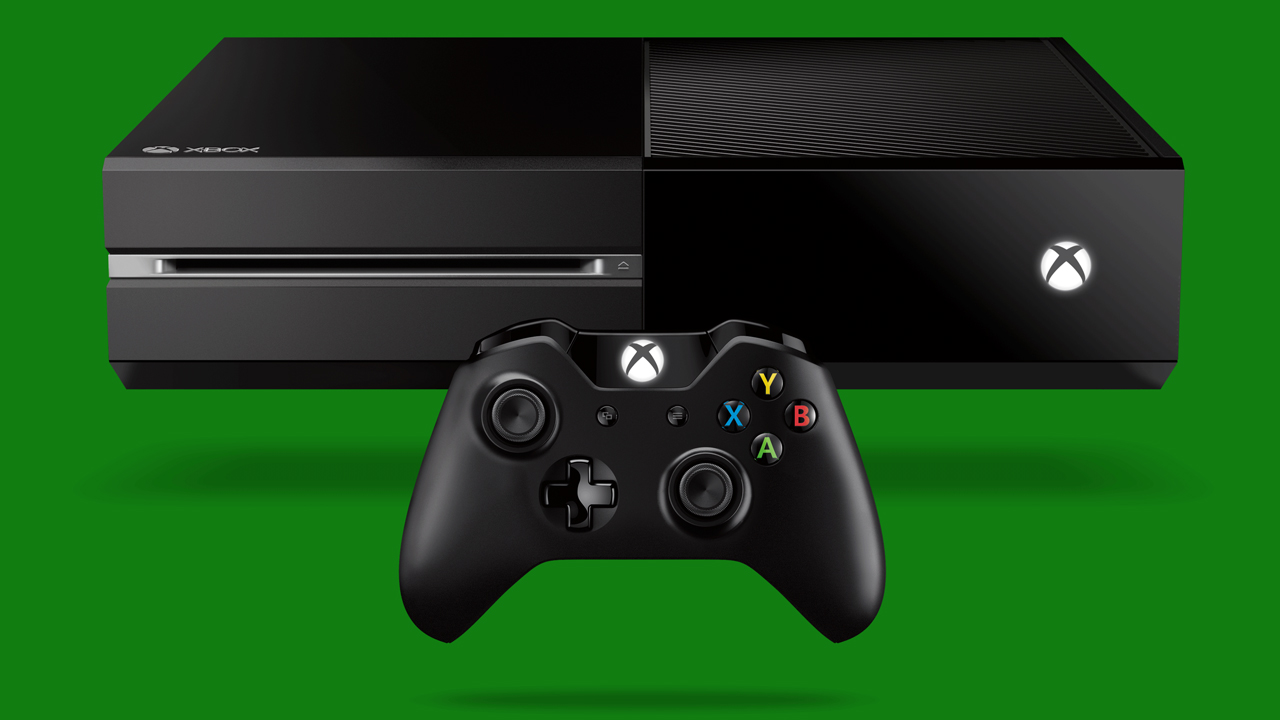
Since Microsoft and Sony’s next generation consoles launched in late 2013, PlayStation 4 has been outselling the Xbox One very, very comfortably. In fact, just a month ago I reported that the PS4 had sold double that of its rival in the first year.
However, in November Microsoft’s console finally managed to claim the top spot, helped in no small part by a price cut and some decent software launches coming into the holiday season.
According to sales tracking company NPD (and shouted loudly from the rooftops by Microsoft, naturally), the Xbox One was the bestselling console in both the US and UK last month. Did it best its rival globally? We don’t currently know. NPD says the Xbox One sold 1.2 million units in the US in November, but without any other sales figures for either console, we have no idea of the scale of the victory.
The Xbox One definitely enjoyed a bumper month though. Mike Nichols, corporate vice president for Xbox marketing, said:
Response to the holiday lineup of games on Xbox One was incredible, with Xbox One fans buying more games in November in the US than any other gen eight platform and enjoying over 357 million hours of gameplay globally. More fans logged into Xbox Live across Xbox One and Xbox 360, and enjoyed more entertainment, than any other month in the history of Xbox. We love to see the excitement from our fans and are grateful for their passion, support and contributions to the Xbox community.
Profits were down as a result of price cutting, but Liam Callahan, NPD analyst, said. "Despite a decline in dollar sales, hardware unit sales for eighth generation consoles increased by 3 percent over November 2013".
Xbox One topping the charts in the US and UK is obviously great news for Microsoft, and while it’s likely PlayStation 4 still came out on top globally, it finally puts Microsoft's console back in the race.
Did you buy a games console for Christmas? If so, which one did you choose?
-

Microsoft to unveil the next chapter of Windows 10 in January
Publié: décembre 11, 2014, 8:53pm CET par Wayne Williams
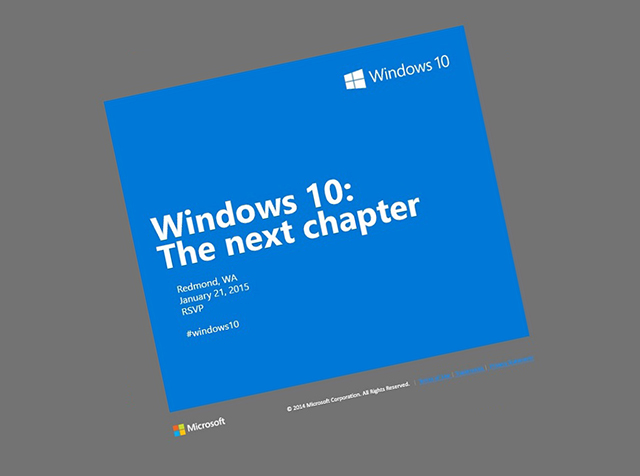
Windows 10 is very much a work in progress. While certain elements of the forthcoming OS appear close to how they will be in the finished release, much of what’s in the Technical Preview is early and very buggy. There’s been talk of the new operating system coming out in Spring 2015, but the latest rumors, based on what Kevin Turner, Chief Operating Officer at Redmond, told the Nikkei news service, a September release is looking a far more realistic prospect. That’s a smart move, as the last thing Microsoft should be doing is rushing out an unfinished OS -- as it did with Windows 8.
You won’t have to wait too long for your next big batch of Windows 10 goodness though, as Microsoft will be holding an event at its Redmond campus on January 21 to talk about the "next chapter" of the OS.
According to Brandon LeBlanc, Senior Marketing Communications Manager on the Marketing Group at Microsoft, the event will include presentations from the Operating Systems Group’s leaders, including Terry Myerson, Joe Belfiore and Phil Spencer, and focus on the Windows 10 consumer experience. There’s no surprise there really, as we’re already expecting a consumer preview to be released around the same time.
There’s a good chance we’ll get to see the OS running on mobile devices too (tablets certainly, smartphones less of a safe bet).
Naturally, Microsoft CEO Satya Nadella will also be on hand to share his thoughts.
The invites are going out, but if you don’t receive one (and it’s a fairly safe bet you won’t) the good news is the event will be webcast and you'll be able to watch it here live.
-

Fitbit adds Cortana support to its Windows Phone 8.1 app
Publié: décembre 10, 2014, 1:26pm CET par Wayne Williams
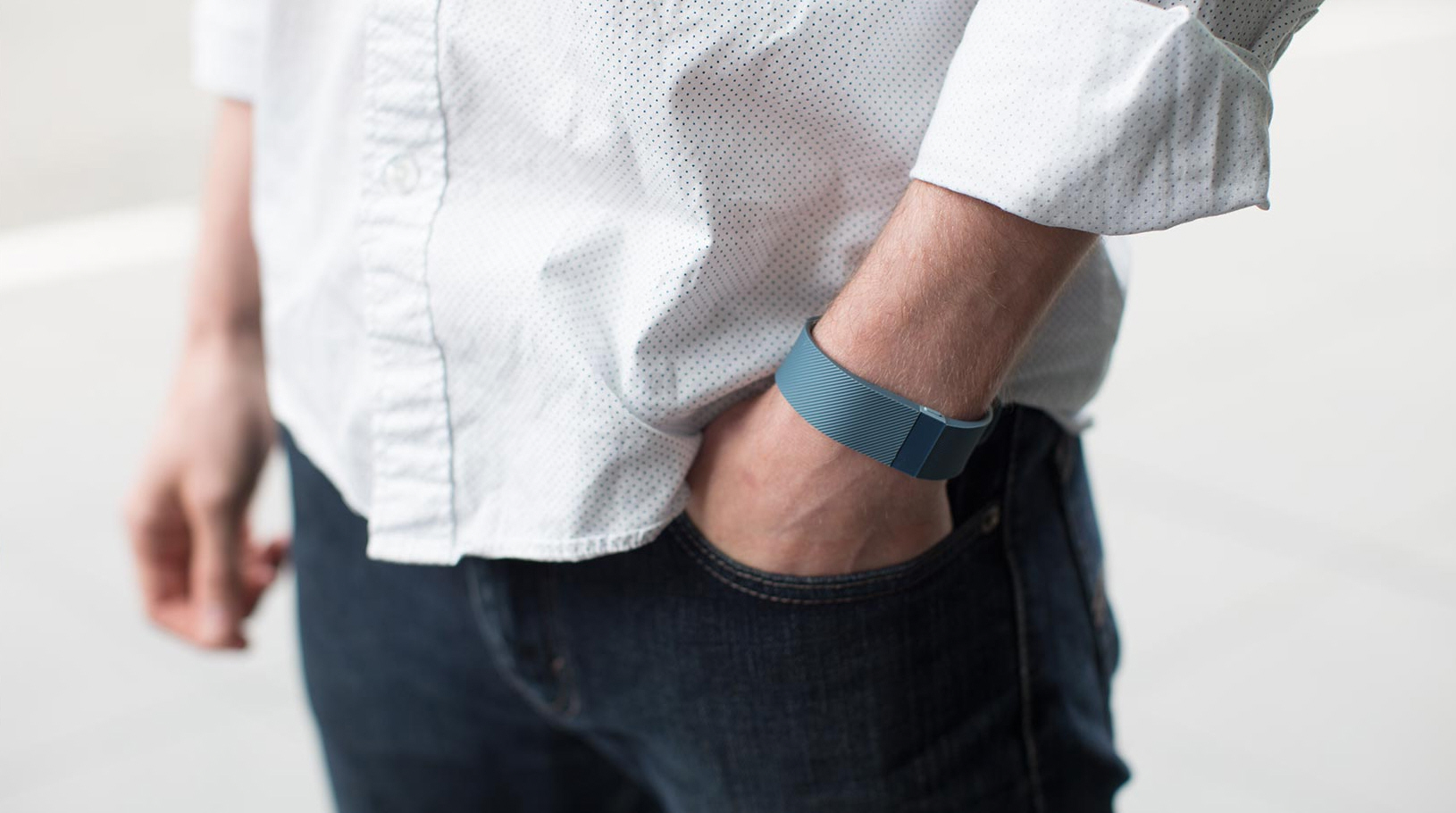
When Fitbit launched its free, native app for Windows Phone 8.1 four months ago, it was a huge win for Microsoft which has in the past struggled to entice big names to its platform. The Fitbit app includes pretty much everything an owner of one of the firm’s activity trackers could want, including real-time and historical stats, automatic wireless syncing, activity and food logging, and the ability to pin the Fitbit Live Tile to your Start screen.
But where some companies simply port Android or iOS versions of their apps to Windows Phone and then forget about them, Fitbit shows just how committed it is to Microsoft's mobile platform by updating its app to introduce Cortana integration for easy voice-activated food & activity logging, as well as various other features.
Fitbit touts the following new additions:
- Cortana: Available today in beta, users can quickly log any of the 350,000 foods in the Fitbit database using natural language like "Fitbit, I ate lasagna for dinner" or "Fitbit, I had a coffee with breakfast". Users can also create silent alarms for Fitbit trackers.
- Fitbit Challenges: With Fitbit Challenges, users can directly compete with up to 10 friends and family to help meet and beat goals in new competitions, including Daily Showdown, Workweek Hustle and Weekend Warrior.
- MobileTrack: Windows Phone users can track steps directly from their smartphone -- no Fitbit required.
- Background Sync and Push Notifications: Now available for Challenges, messages, progress updates and more.
"We’re committed to the Windows Phone community and are excited to bring these innovative features to the Fitbit experience on this platform", says James Park, CEO and Co-founder of Fitbit. "As we do across all mobile platforms, we’re continuing to design features that empower people with information and motivate them to set and reach goals with fun and engaging experiences on our mobile apps. However, with the custom Cortana integration, we worked closely with Microsoft to design around its unique and innovative intelligent personal assistant technology to create an awesome experience for Fitbit users syncing to the Windows Phone platform -- making it even easier for them to track and take control of their health and fitness results".
Fitbit doesn’t intend to stop there either. Future additions, made in conjunction with Microsoft, include:
- Additional Cortana Functionality: Upcoming Cortana features will include activity logging and the ability to enable exercise mode, all through voice commands.
- Support for New Fitbit Products: Windows Phone users will have immediate syncing with Fitbit Charge and support for Fitbit Charge HR and Fitbit Surge, as well as heart rate tracking, will be live once those products are available.
- Windows App: Windows 8.1 desktop, laptop and tablet users will experience a new Fitbit app for Windows 8.1, completely remade with a new design and better functionality. Features will include manual logging of activities, food, sleep, weight and water, as well as Challenges. This will be available soon.
- MobileRun: Windows Phone 8.1 will be able to access MobileRun, which uses GPS to track, log and compare workouts and offers real-time updates while running, as well as voice cues delivering stats and providing extra encouragement. That will be available soon also.
- New Language Support: The Fitbit app will soon offer support for French, German, Italian and Spanish languages.
"The Windows platform offers a rich ecosystem of apps for health and fitness enthusiasts", says Todd Brix, general manager, Windows Apps and Store, Microsoft Corp. "Like us, Fitbit also aims to provide an unparalleled user experience, and we’re excited Fitbit is bringing even more functionality to the hugely popular Fitbit app for Windows Phone, including unique features like Cortana integration".
The new Windows Phone app features are compatible with all Fitbit products, including Fitbit Charge, Fitbit Charge HR and Fitbit Surge activity trackers, as well as Fitbit Flex, Fitbit One and Fitbit Zip.
You can download the app from the Windows Phone Store.
-

Mous Musicase: The iPhone case that puts an end to lost and tangled headphones [Review]
Publié: décembre 8, 2014, 12:42pm CET par Wayne Williams

I use headphones to listen to music and games on my iPhone a lot. As a result, I often have headphones with me, either wrapped around my phone or just shoved in a pocket. Sometimes though I’ll forget to take them when I go out, which can be a pain.
The successfully Kickstarter-backed Mous Musicase aims to solve this problem by integrating Apple EarPods into your iPhone so they’re always at hand and you don’t have to worry about them getting tangled or lost.
The case essentially provides a home for your headphones, with a winder so you can wind the headphones back in when not in use.
Although getting your Apple EarPods in looks like it might be complicated, it’s actually very easy and just takes some slight assembly. You pull the cross piece out, insert the headphone jack through the mouse shape at the top of the case, and then poke the jack through the hole in the winder. Reattach the cross piece, add your phone and you’re all done.
The Mous Musicase is really designed to be used with Apple EarPods -- the earbuds fit perfectly into the space provided. You can use it with other headphones, but it probably won’t look as good or work as well.
The case itself is made of plastic with a choice of colors for both the case and the winder, and you can mix and match them however you like. I was sent the retro edition, which has the very 1980s color combination of pale blue and shocking pink.
There are cutouts along the case for the sleep/wake and volume buttons, and the speaker and headphone jack. There’s also a hole for the camera.
Swapping the winder and removing your phone from the case is very simple, and the whole design works very well.
However, there is one major issue that some people may have with the Mous Musicase, and that’s it adds significant bulk (but not weight) to your phone, doubling its depth. I like my phones to have a bit of heft to them, but even so, it takes some getting used to. It’s not unlike carrying around an original iPod.
That’s the tradeoff then. You can elect to carry headphones in a separate case or risk damaging them, or you can accept carrying around a much thicker phone with your headphones always at hand.
The case I have is for the iPhone 5/5s, but an iPhone 6 version is coming soon and will be slimmer with tapered edges, so the thinner phone will have a thinner case.
The cases are available in White, Black, Blue and (limited edition) Kickstarter Green, with winders in Dark Blue, Musicalize Gold, Pink, White, and Black. Prices start from £17, but will rise to £19 in the future. You can order one through the Kickstarter page here. You can also go to www.mous.co.
-

EyeFly3D Nanoglass: Convincing 3D on your iPhone -- no silly glasses required [Review]
Publié: décembre 5, 2014, 5:11pm CET par Wayne Williams
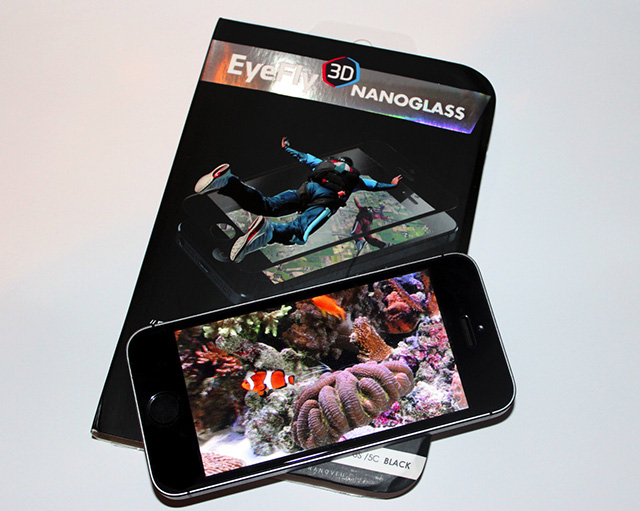
3D movies might not be as popular (or ubiquitous) as they were a few years ago, but people still enjoy viewing media with a degree of depth. The massive success of the Nintendo 3DS is testament to this.
If you own an Apple iPhone, and want to view images or video in 3D (without having to wear special glasses), you now can thanks to EyeFly3D Nanoglass. This is a screen protector that you attach to your iPhone and which delivers a convincing 3D effect.
It works by using a lenticular lens array. Half a million lenses (each less than one-thousandth of a millimeter in size) send separate images to the left and right eyes, which fool your brain into seeing depth of field where there is none. This method doesn’t darken the iPhone screen, and it won’t give you headaches while looking at 3D content either.
Attaching the screen overlay (which is made from 0.5mm thick 9H tempered glass) to your iPhone is very easy, you just remove any existing screen protectors, clean your iPhone’s screen, then peel off the adhesive backing and stick the overlay into position. This can be quite fiddly, truth be told (you need to get the angle exactly right), and bubbles can get trapped under the overlay. If that happens you’ll need to peel it off and try again.
You don’t really notice the overlay once it’s there, although the tiny lenses do make it look as if you can view individual pixels as you could in the earlier pre-Retina iPhones. It takes some getting used to but it’s far from dreadful. The overlay has no impact on the iPhone’s touch sensitivity.
There are two free apps available -- EyeFly3D Vid and EyeFly3D Pix. EyeFly3D Vid lets you watch any of your self-shot videos in 3D, load recommended videos and search YouTube for content. Once a video is playing you can adjust the depth of field using a slider, and also switch between 2D and left and right sources. EyeFly3D Pix lets you turn your own photos into 3D images. The process is actually very simple and just involves marking near, middle and far areas. 3D images can be saved and used as wallpapers. Both apps have a calibration guide, so you can get the screen positioning just right.
It is of course all a bit of a gimmick. You probably won’t be viewing photos or watching videos in 3D on a regular basis, certainly not once the novelty has worn off, but it’s still a neat addition to your phone, especially as the overlay works as an excellent screen protector too.
The Eyefly3D Nanoglass for iPhone 5, 5s and 5c or iPod touch 5 costs $24,95 from [eyefly3d.com]. Customers in the UK can currently get it from IWOOT for the bargain price of £9.99.
-

BetaNews giveaway: Hub It customizable sync and charging station
Publié: décembre 5, 2014, 10:58am CET par Wayne Williams

Designed to make it easy to charge up to seven devices at once, regardless of what those devices actually are, Hub It is a clever piece of kit that uses hot switchable cartridges so you can choose which connectors it offers.
By default you get three USB 3.0 ports and connectors for Micro USB, Mini USB, Apple 30 pin and Apple Lightning, but you can opt for any configuration and there are additional cartridges available for other devices, with more choices coming soon. I reviewed it here, and loved it.
The standard version retails for $79.99 (with extra cartridges costing $7.99 each), but the good news is we’ve got two to give away for free to BetaNews readers.
To have a shot at winning all you have to do is leave a (polite) comment below, using a BetaNews account (if you use a general Disqus account, there is a chance we won't have your email details, and so won't be able to contact you).
Use this link to register for a BetaNews account, if you haven’t already done so. You can log in using a BetaNews account by clicking on the comment box and using the option Sign in with BetaNews. If you are already logged in with another account click on the gear icon -- bottom right corner of the comment box -- and log out, then log in with the BetaNews account.
We'll randomly select a winner on December 17 and notify them by email. If we don't receive a reply within two business days, we'll select a replacement winner.
Eggtronic (the maker) is happy to ship the Hub It prizes for free to anywhere in North America and Europe, but winners will be responsible for any duties, taxes or other charges occurred.
-

Yahoo use soars and Google nosedives as Firefox 34's great search switcheroo begins
Publié: décembre 4, 2014, 1:53pm CET par Wayne Williams

Two weeks ago Mozilla announced that it would be jettisoning Google as the default search option in Firefox, opting instead to go for Yahoo, the search engine that most right-thinking people stopped using, and caring about, years ago (at least Mozilla didn’t select Ask.com).
Firefox 34 launched at the start of the month, with Yahoo as the default choice for US users, and instantly the newly selected search engine saw a massive increase in usage.
According to independent website analytics company StatCounter, Yahoo usage on Firefox 34 in the US on the 2nd December was 29.4 percent. In the previous version, the Google-friendly Firefox 33, it was 9.6 percent. In other words, Yahoo use grew by 19.8 percentage points as a result of becoming the default Firefox search engine.
That 9.6 percent of users changed from Google to Yahoo in Firefox 33 (and presumably earlier versions) is something to raise eyebrows at, but we’ll move on.
Google’s search engine was the big loser with use in Firefox dropping from 82.1 percent to 63.5 percent. A fall of 18.9 percentage points, which is -- as you might expect -- very similar to Yahoo’s gains.
Bing also declined slightly from 6.5 percent on Firefox 33 to 5.8 percent on Firefox 34.
Overall search share across all browsers in the US has yet to be affected by the switch with Google still the clear leader on 78 percent, followed by Bing on 12.4 percent and Yahoo on 7.9 percent.
"Firefox 34 is still being rolled out so its usage is currently quite low. It will be interesting to see how this develops", commented Aodhan Cullen, CEO, StatCounter. "At the moment the change is having a negligible impact on overall search share in the US, but if this early usage trend on Firefox 34 continues then Yahoo could be on course to gain a number of percentage points".
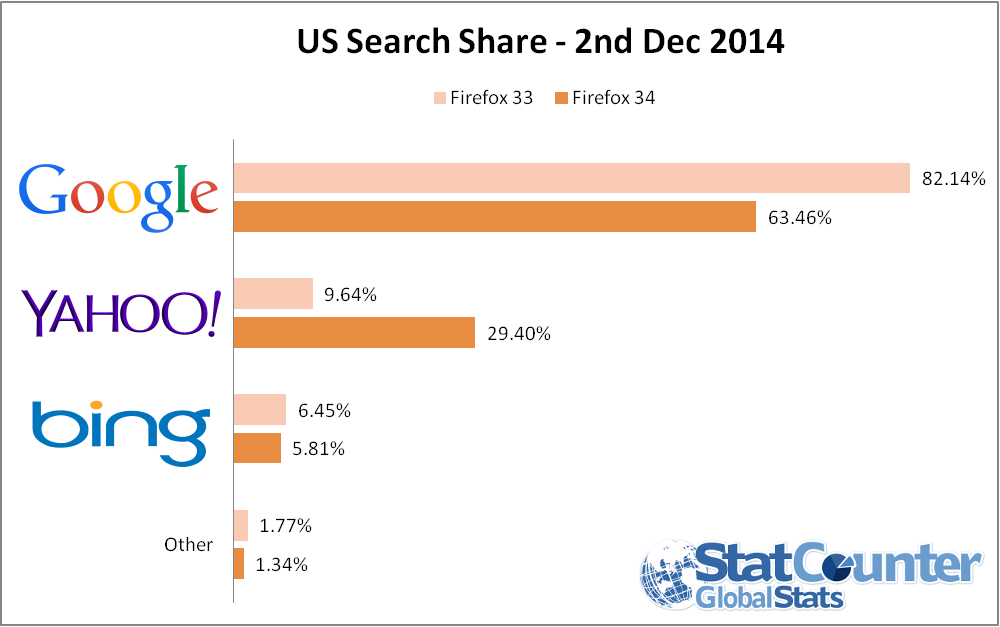
-

Hub It: An essential, fully customizable sync and charging station for all your devices [Review]
Publié: décembre 2, 2014, 4:32pm CET par Wayne Williams
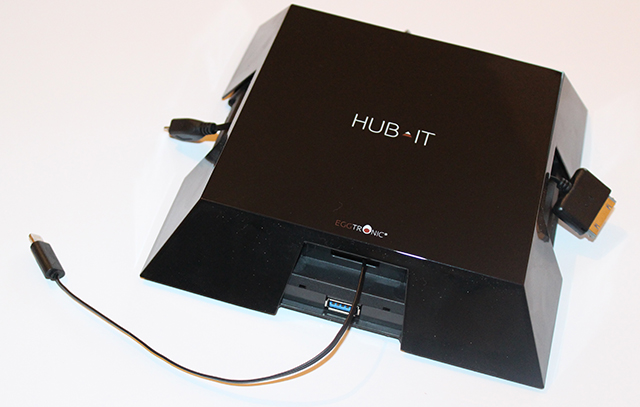
Many of us own multiple devices that charge or are powered via USB. Even though many PCs come with at least two or four USB ports these days, and USB charging adapters that plug into wall sockets are commonplace, that may not be enough. In other words, you may occasionally find yourself needing to charge something, without a spare USB port, or a cable for the task -- especially if you live in a house with teenagers. If all devices used Micro USB life would be simpler, but sadly, they do not.
This is where Hub It comes in. It's a powered sync and charging station that can power/charge up to seven items simultaneously, and includes connectors for all of your devices, including smartphones, tablets, iPhones and iPads, and digital cameras.
It’s a large squat block (170mm x 170mm x 34mm), not unlike a pyramid with the top lopped off. On three of the sides, there are USB 3.0 ports (Type A). On the fourth side, is a port for power, and a connector so you can link Hub It to your PC. In addition, on all four sides are connectors for different devices. It comes with connectors for Micro USB, Mini USB, Apple 30 pin (as used by older Apple devices) and Apple Lightning. So no more hunting around for cables when you want to charge or connect something.
What’s particularly great about Hub It, is these connectors are in hot swappable cartridges, so you can choose which ones to use. If you don’t own any Apple products, you can remove the two Apple connectors and replace them with more Micro USB ones, for example. Replacement cartridges cost $7.99 plus shipping, but you’re not limited to the four types included by default. There are also cartridges for Nintendo handhelds, wireless Qi charging (coming soon), Samsung Galaxy tablets and so on. Browse the selection at www.eggtronic.com.
Swapping the cartridges is just a matter of popping the top of the device off using the clips underneath, and then pulling out a cartridge. Inside, there are actually nine slots for cartridges, although five of them are designed for future functionality -- such as installing a battery cartridge (so you can charge devices when away from mains power) and wireless charging.
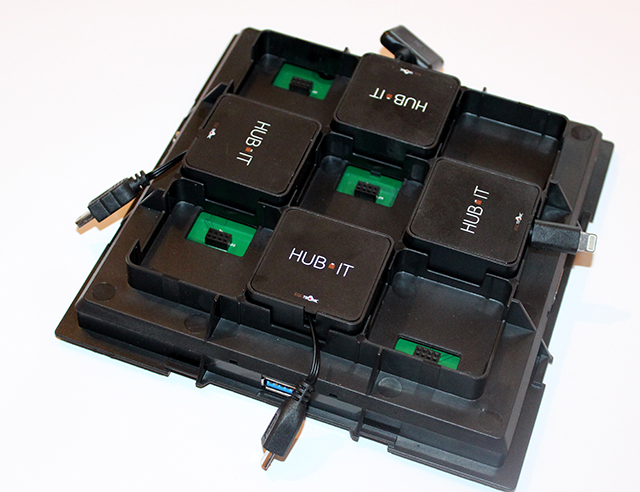
The other clever design thing about Hub It is the connector cables are all retractable, so everything is kept neat and tidy when cables are not in use.
The firmware is upgradeable (download and install the new firmware directly from the website), and the device delivers 20W of Output Power.
Although I own several powered USB hubs, Hub It has become an essential addition to my desk. As I write this, it's charging an iPhone 5s, and Nexus 7. To ensure maximum charging, you’re advised to temporarily disconnect Hub It from your PC.
In the week or so I’ve been using Hub It, the only problem I’ve encountered is with the Lightning connector which wouldn’t charge my iPad or iPhone. I moved the connector’s cartridge around, removed and reinserted the connector into the iPad several times, and now it's charging fine. Whatever the problem was seems to have gone away. All of the other ports and connections are working without issue.
Hub It costs $79.99 and is available from Amazon, Best Buy and Walmart. You can find out more from the Eggtronic website.
If you need to charge or connect a diverse range of devices, the Hub It should definitely be on your wish list, and I can’t recommend it highly enough.
-

StatCounter: Windows 8.1 is now more popular than XP
Publié: décembre 1, 2014, 8:01pm CET par Wayne Williams
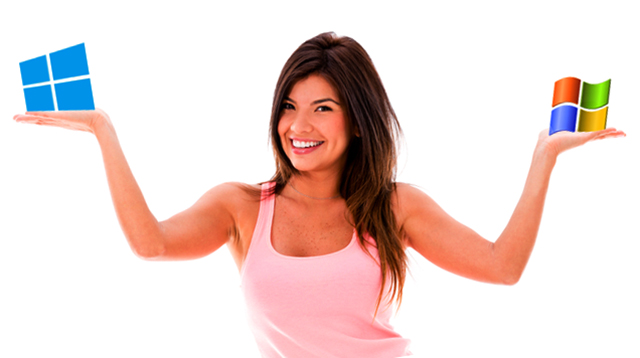
It still has plenty of haters, but Windows 8.1 is finally finding an audience. It may not be anywhere near as sizable as the audience Windows 7 commands, but after losing usage share earlier in the year, the tiled OS is finally headed in the right direction, and at speed.
Earlier today I reported on NetMarketShare’s figures which show Windows 8.1 as having 12.10 percent of the desktop OS market, but now StatCounter has released its own figures which show Windows 8.1 as having just hit a pretty special milestone -- overtaking Windows XP for the first time.
According to StatCounter’s figures, Windows 8.1 has 10.95 percent global share, compared to XP’s 10.69 percent. Sure, Windows 8.1 is ahead by only the very narrowest of margins, but it’s still good news for fans of the much maligned OS.
The independent website analytics company has Windows 7 with the usual commanding lead -- 43.9 percent.
"Following a somewhat mixed reaction to Windows 8, Windows 8.1 has made steady progress since its launch," commented Aodhan Cullen, CEO, StatCounter. "It passed Windows 8 in August and has now passed Windows XP in November. The growth trajectory for Windows 8.1 has been positive but if current trends continue it will not topple Windows 7 before Windows 10 is launched in 2015".
StatCounter’s figures show global market share, but it also provides details on how well the various flavors of Windows are doing in the US and UK.
According to the latest set of figures, in the US Windows 8.1 is at 12.2 percent having overtaken XP in October. Windows 7 leads with 43.9 percent.
In the UK, where Windows 8.1 overtook XP in April, XP has declined to 4.2 percent while Windows 8.1 is currently at 13.2 percent. Windows 7 is number one on 40.4 percent.
You can view a breakdown of how well the operating systems are doing in other countries here.
The percentage differences between StatCounter and NetMarketShare's figures are to be expected, as determining usage share by monitoring visitors to millions of websites is far from an exact science, but one thing is indisputable -- Windows XP is on the way down, and Windows 8.1 is, at long last, on the way up.
Photo Credit: Andresr /Shutterstock
-

Bing unveils top searches of 2014 -- Kim Kardashian succeeds in breaking the internet
Publié: décembre 1, 2014, 1:40pm CET par Wayne Williams

As 2015 draws ever closer, we’ll begin seeing retrospectives highlighting the most memorable moments of the past year.
With a month of 2014 still to go, Bing has jumped in first with its look back at the people, moments and events that have shaped the year. There are some interesting highlights but some even more curious omissions.
Kim Kardashian’s attempts to break the internet with her oiled up sizable rear have certainly paid off, as according to Microsoft’s search engine, she was the most searched for person in 2014, dethroning Beyoncé who has to settle for second place, above Miley Cyrus. What’s interesting is there’s no sign of Jennifer Lawrence in the top ten, which is surprising given her starring role in the Fappening leaked photos scandal.
In fact, the Fappening itself wasn’t big news according to Bing either. It’s not one of the top ten most searched news stories of the year. At the top of that list is the World Cup, Super Bowl, and Missing Malaysia Airlines jet.
The most searched for device was the iPhone 6, followed by the Xbox One and then the Fitbit. Surface Pro 3 made an appearance at number 5. Interestingly, Sony's PS4 was entirely absent from the top ten.
The most searched for apps were mostly social ones, with Facebook in the top slot, followed by Twitter, Instagram, Skype, Vine, and Snapchat.
Frozen took the crown for most searched movie in 2014.
You can browse the full list of findings at www.BingTrends.com, but here are some top tens to be getting on with.
Most searched person:
- Kim Kardashian
- Beyoncé
- Miley Cyrus
- Katy Perry
- Justin Bieber
- Joan Rivers
- Jennifer Lopez
- Kendall Jenner
- Kaley Cuoco
- Robin Williams
Most Searched News Stories:
- World Cup
- Super Bowl
- Missing Malaysia Airlines jet
- Winter Olympics
- The rise of ISIS
- Ray Rice controversy
- Shooting in Ferguson, Missouri
- Ebola outbreak
- Brittany Maynard Death with Dignity
- Ukraine (Crimea)-Russia conflict
Most Searched Devices:
- iPhone 6
- Xbox One
- Fitbit
- iPad
- Surface Pro 3
- Kindle Fire
- Windows Phone
- Galaxy S4
- Chromecast
- Google Glass
Most Searched Apps:
- Skype
- Vine
- Snapchat
- Candy Crush Saga
- Angry Birds
- Farmville
What do you think of the list?
-

Bing unveils top searches of 2014 -- but there are some curious omissions
Publié: décembre 1, 2014, 1:40pm CET par Wayne Williams

As 2015 draws ever closer, we’ll begin seeing retrospectives highlighting the most memorable moments of the past year.
With a month of 2014 still to go, Bing has jumped in first with its look back at the people, moments and events that have shaped the year. There are some interesting highlights but some even more curious omissions.
Kim Kardashian’s attempts to break the internet with her oiled up sizable rear have certainly paid off, as according to Microsoft’s search engine, she was the most searched for person in 2014, dethroning Beyoncé who has to settle for second place, above Miley Cyrus. What’s interesting is there’s no sign of Jennifer Lawrence in the top ten, which is surprising given her starring role in the Fappening leaked photos scandal.
In fact, the Fappening itself wasn’t big news according to Bing either. It’s not one of the top ten most searched news stories of the year. At the top of that list is the World Cup, Super Bowl, and Missing Malaysia Airlines jet.
The most searched for device was the iPhone 6, followed by the Xbox One and then the Fitbit. Surface Pro 3 made an appearance at number 5. Interestingly, Sony's PS4 was entirely absent from the top ten.
The most searched for apps were mostly social ones, with Facebook in the top slot, followed by Twitter, Instagram, Skype, Vine, and Snapchat.
Frozen took the crown for most searched movie in 2014.
You can browse the full list of findings at www.BingTrends.com, but here are some top tens to be getting on with.
Most searched person:
- Kim Kardashian
- Beyoncé
- Miley Cyrus
- Katy Perry
- Justin Bieber
- Joan Rivers
- Jennifer Lopez
- Kendall Jenner
- Kaley Cuoco
- Robin Williams
Most Searched News Stories:
- World Cup
- Super Bowl
- Missing Malaysia Airlines jet
- Winter Olympics
- The rise of ISIS
- Ray Rice controversy
- Shooting in Ferguson, Missouri
- Ebola outbreak
- Brittany Maynard Death with Dignity
- Ukraine (Crimea)-Russia conflict
Most Searched Devices:
- iPhone 6
- Xbox One
- Fitbit
- iPad
- Surface Pro 3
- Kindle Fire
- Windows Phone
- Galaxy S4
- Chromecast
- Google Glass
Most Searched Apps:
- Skype
- Vine
- Snapchat
- Candy Crush Saga
- Angry Birds
- Farmville
What do you think of the list?
-

Windows 8.x is no longer a huge embarrassment to Microsoft
Publié: décembre 1, 2014, 12:00pm CET par Wayne Williams

Last month Windows 8.x's usage share did something very surprising -- it went up. Massively, according to figures from web analytics firm NetMarketShare. The tiled OS had been losing share for months, but in October it suddenly took off like a rocket, packing on 4.54 percentage points share in a single month, mostly at the expense of Windows XP.
It wouldn’t have been a total surprise to see Windows 8.x's growth stop, or go back into reverse gear in November, but actually, both Windows 8 and 8.1 showed positive gains once again.
In October Windows 8’s share rose to 5.88 percent. In November it went up by a moderate 0.67 percentage points for a total of 6.55 percent. Windows 8.1 went from 10.92 percent to 12.10 percent, for an increase of 1.18 percentage points. In total Windows 8.x put on 1.85 percentage points in November, and now has a respectable 18.65 percent of the desktop OS market.
Perennial favorite Windows 7 also saw some growth (as you'd probably expect), going from 53.05 percent in October to 53.71 percent in November. That’s an increase of 0.66 percentage points. It seems very unlikely it will able to continue to grow share going into the New Year as Microsoft makes it ever harder to find and buy the now aging OS.
Once again the big loser was Windows XP which is shedding users at an impressive rate now (and not before time). It went from 17.38 percent in October to 13.57 percent in November, a drop of 3.61 percentage points.
It will be interesting to see if Windows 8.x can keep up its forward momentum in December. You would expect it to, given all the deals on new PCs and Windows tablets we’ve seen over this holiday weekend, but it’s impossible to say for certain. In the same period last year, Windows 8.x saw minimal gains, and Windows 7 was the clear winner, growing by 2.62 percentage points. But the market has changed a fair bit in a year.
If, as it should, Windows 8.x continues to grow in December, there's a reasonable chance it will break the 20 percent share barrier -- it only has to achieve gains of 1.35 percentage points after all. That will be a massive change of fortunes for an OS which just a matter of months ago was struggling to hold on to 12 percent of the market.
//
Photo Credit: Ariwasabi/Shutterstock
-

BitTorrent unveils its first original TV series -- Children of the Machine
Publié: novembre 28, 2014, 9:52am CET par Wayne Williams
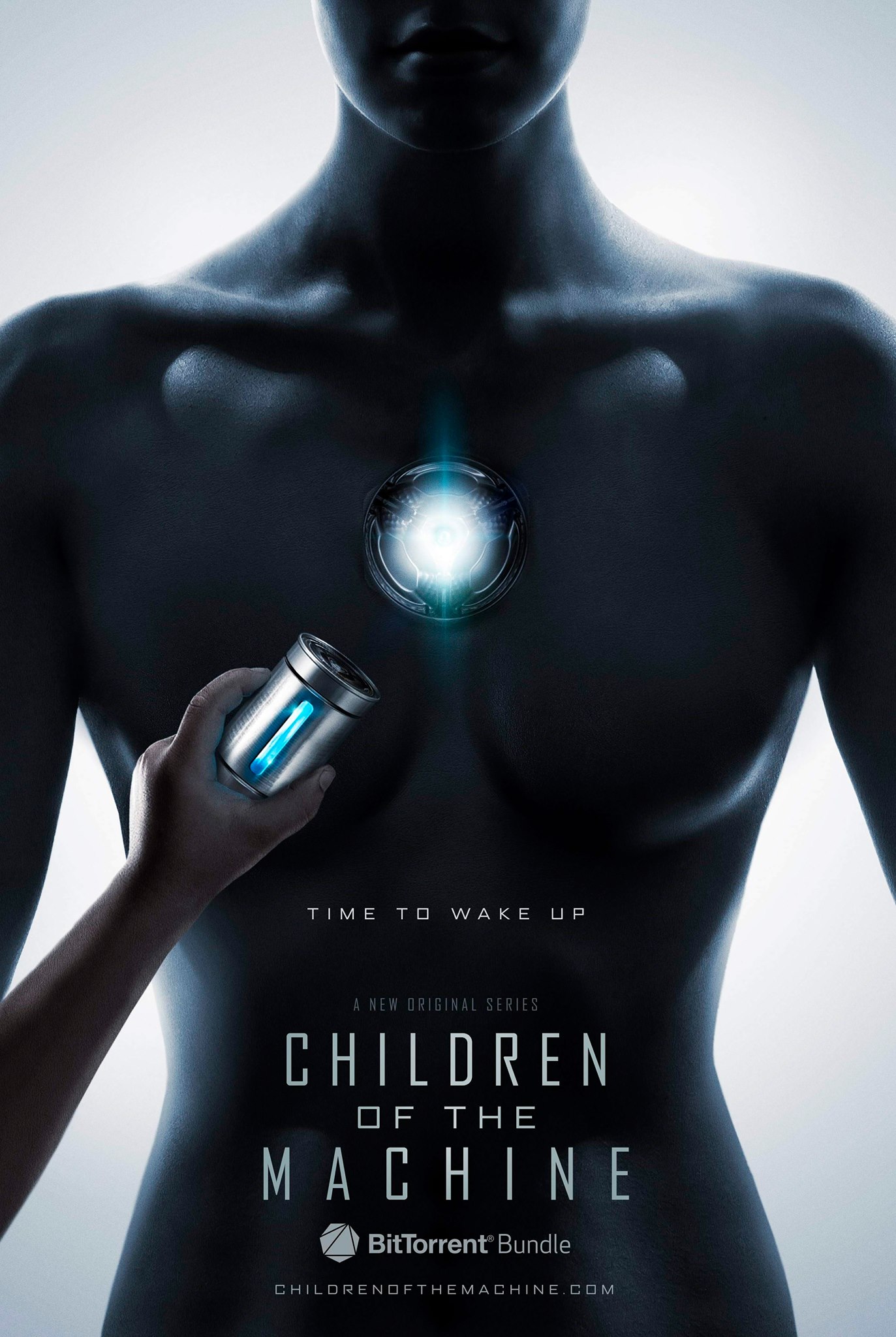
Although BitTorrent’s reputation is as a means to download music and movies illegally, the company is trying to change that by offering original, and legal content.
Two months ago, Radiohead’s Thom Yorke released a new album as a paid BitTorrent Bundle, and now the file sharing firm announces its first original TV series -- Children of the Machine.
Due to arrive in fall 2015, the eight-episode sci-fi show will be available as a free, ad-supported BitTorrent Bundle. If you like it, you’ll be able buy an ad-free version for $4.95, or $9.95 for a version with bonus content.
Children of the Machine’s producer Marco Weber said: "This is a science fiction show catered to the typical tech-savvy, male-dominated audience. We're not trying to launch a romantic comedy, so the concept of this show moved us toward BitTorrent".
-

UK High Court orders ISPs to block a further 53 piracy sites
Publié: novembre 27, 2014, 8:33pm CET par Wayne Williams
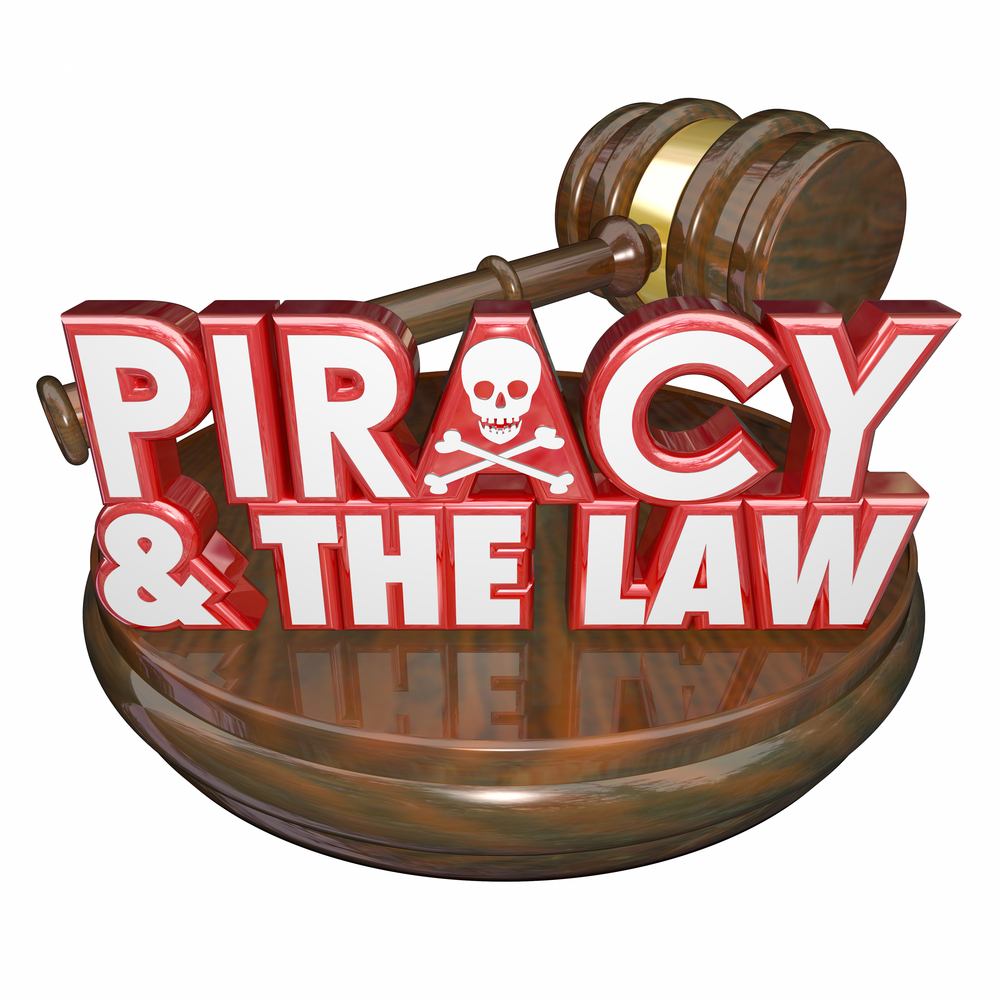
If you live in the UK it’s getting ever harder to access pirated music and movies on the web. After years of trying to defeat pirates in various ways, including suing downloaders, representatives of rights holders have found that the easiest and most effective solution is to take their complaints to the high court and ask for the infringing sites to be blocked.
The process, which started with the banning of The Pirate Bay in 2012, is now so straightforward for the likes of the Motion Picture Association and BPI (British Phonographic Industry), that whole batches of sites are getting outlawed at a time. Yesterday there were 40 copyright infringing sites blocked in the UK, today that number more than doubles to 93.
53 new services, including the likes of Rapid Moviez, Torrentz, Sumotorrent, IP Torrents and BitSoup, will soon be inaccessible to customers of the UK's top six ISPs -- BT, EE, TalkTalk, O2, Sky, and Virgin Media. Visitors to any of the blocked services will see a message from their ISP explaining that their chosen site is not available due to an order from the High Court.
"Securing court orders requiring ISPs to block access to illegal websites is an accepted and legitimate measure to tackle online copyright infringement", Chris Marcich, president of the MPA's European division said, following the latest ruling.
"It carefully targets sites whose sole purpose is to make money off the back of other people's content while paying nothing back into the legitimate economy".
There are plenty of workarounds available of course, including VPNs and proxies, so the latest move will have little impact on seasoned downloaders, but the aim is to try and make life difficult for more casual pirates, in the hope they will opt for legal means of accessing movies or music instead.
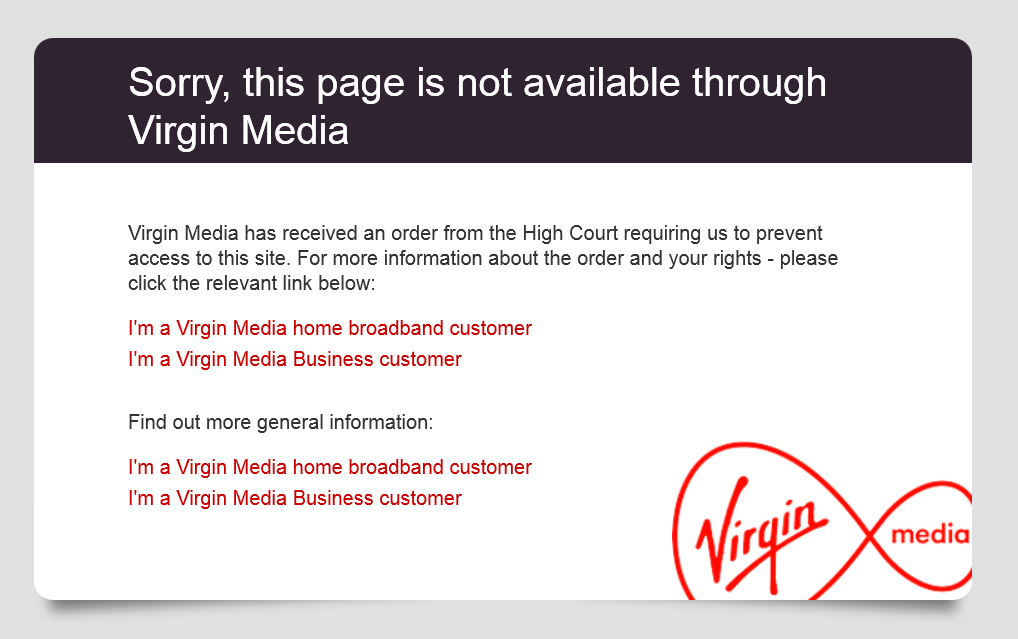
Photo Credit: iQoncept /Shutterstock
-

Exclusive: Get AMC Security Premium FREE for 6 months
Publié: novembre 27, 2014, 9:01am CET par Wayne Williams
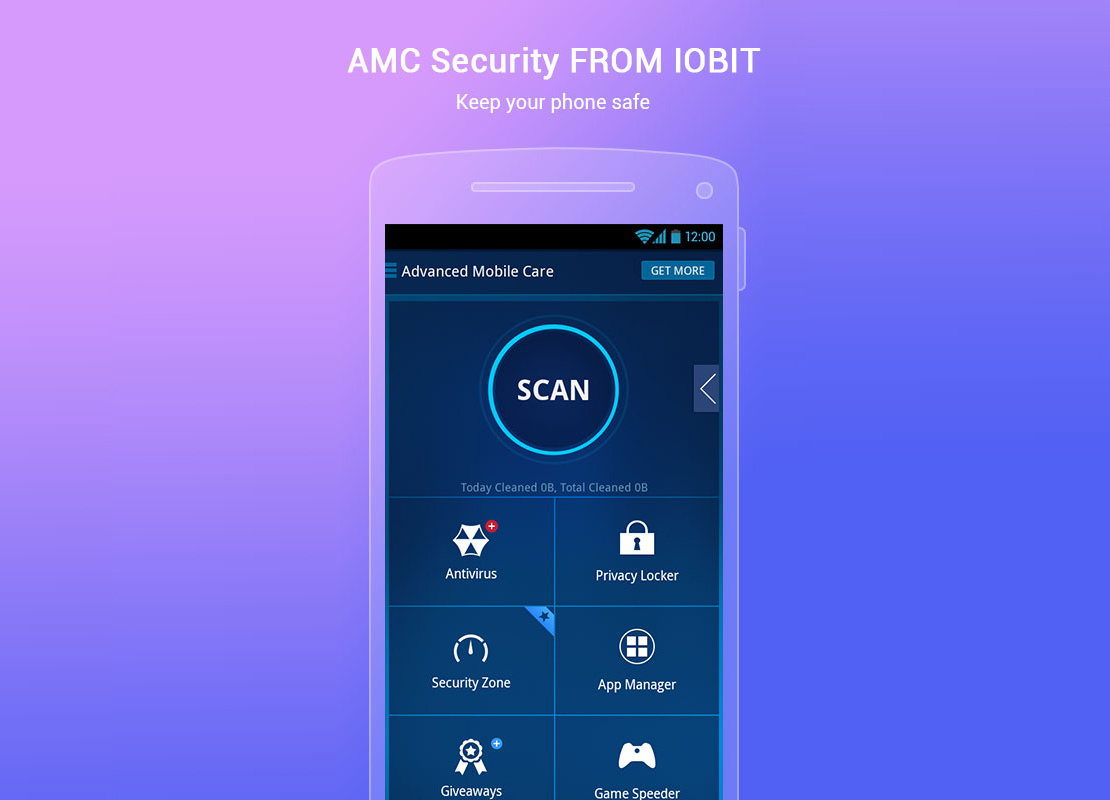
IObit has an excellent free Android app called AMC Security - Clean & Booster which comes packed with features designed to improve your phone or tablet’s security and boost performance. You can run an all-in-one scan, or access individual features including Antivirus, Privacy Locker, Security Zone, App Manager and Game Speeder. There’s a bunch of additional tools available too, such as Task Killer, Privacy Advisor, Call/SMS Blocker, Battery Saver, Anti-Theft and Cloud backup.
While the free version is very good, there’s a paid edition called AMC Premium available as an in-app purchase which offers some powerful additional features. AMC Premium currently retails for $9.99 a year (although a 7-day trial is available) but BetaNews readers can try it absolutely free for six months.
Premium users get access to all of the following features:
Contacts & SMS Vault -- Allows you to hide SMS/call logs and contacts records.
Customized Scan & Clean -- Schedule when and how often to scan and clean your Android device automatically.
Anti-Phishing -- Offers real-time protection from malicious sites designed to steal your personal information.
Realtime Antivirus Updates -- Ensures you’re always protected from the latest threats.
Scheduled Eraser -- Removes junk at a time that best suits you.
To take advantage of this great free offer and get your free six month version of AMC Security Premium just click here and enter your name and email address. You will be emailed an exclusive code once the giveaway is complete.
To use the code, tap "Get Trial" at the top right, then tap "Here" at the bottom of the Paid page to open a popup. Enter the code and tap "OK".
The six month period starts from when you enter the code.
You have just 72 hours to take advantage of our exclusive offer, so act fast!
Click here to enter your details and take advantage of this exclusive offer.
-

PowerSkin selling $50 iPhone and Android battery packs for just one cent on Cyber Monday
Publié: novembre 26, 2014, 4:34pm CET par Wayne Williams
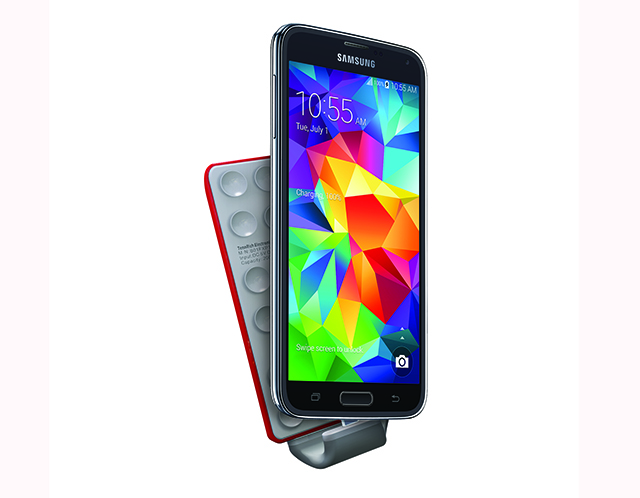
There are plenty of bargains to be had before, during, and after Black Friday, and if you’re shopping for a battery back to charge your iPhone or Android device, hold off a few days and you’ll be able to pick up a steal of a deal on Cyber Monday.
PowerSkin, a leader in portable power solutions, sells PoP'n battery packs that cost $49.99, but on Monday the retailer will be offering them for just one penny (plus $7.99 shipping and handling).
The offer is available to consumers in the continental United States and runs from 12:00am -- 11:59pm (ET) on December 1.
Orders can be placed at [power-skin.com] and you just need to enter the code "penny" at checkout to earn your whopping discount. As you might expect, there is a limit of one unit per email address (not shipping address, interestingly), and the offer covers all PoP'n packs with the exception of the PoP'n 2.
The PoP'n chargers feature a 10mm case and lightweight design, weighing only 3.03 ounces with a 2000 mAh battery. They are available in a variety of colors including white, black, red and pink.
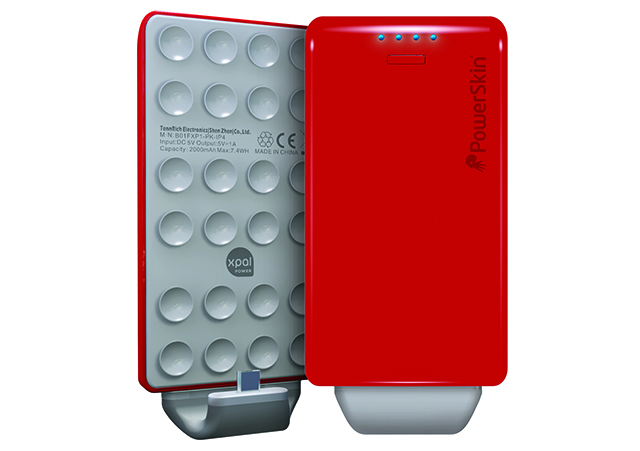
-

Alternative finance -- New ways to spend your money
Publié: novembre 25, 2014, 9:26pm CET par Wayne Williams

The days of paying for everything with cash are slowly drawing to a close, and if you borrow or pay back money, there’s a very good chance wads of notes won't be involved in the transaction. I personally do a lot of online shopping, pay for goods in real shops using contactless cards, and send money and pay bills via an app, and I imagine a lot of people do the same. I still carry a wallet, but it generally doesn’t have much, if any, actual money in it.
Foreign exchange marketplace CurrencyFair.com has put together a very detailed, and great looking infographic covering the many different and innovative ways you can now make payments and exchange currencies -- from crowdfunding, through peer-to-peer payments, to cryptocurrency, like Bitcoin.
This fascinating peek into the world of alternative finance explains what each method is, provides a brief history, and explains how it works. It also looks at whether or not the system works. Unsurprisingly, all of the methods covered are successful, and are set to become even more so in the future.
The controversy surrounding Bitcoin gets its own section -- there have been thefts, discrepancies, and calls for regulation -- but despite all the bad press, the cryptocurrency remains incredibly popular with an average of 3,000 Bitcoin transactions processed every hour. Whatever your views on Bitcoin, it certainly looks as if it’s here to stay.
Which of the various methods detailed below have you had experience of? Do you trust them?

Photo Credit: iprostocks/Shutterstock
-

Slow devices are causing billions of lost hours a year
Publié: novembre 24, 2014, 11:37am CET par Wayne Williams

I’m pretty impatient when it comes to technology and I’ve often wondered just how much of my time is being wasted while I’m waiting for something to load, or download, or for tasks to complete. Memory expert Crucial.com has done a spot of surveying and discovered that slow tech is responsible for wasting billions of hours every year.
The company surveyed 1,148 Brits, aged 16-65, and found the average person wastes over 39 hours each year (or 6.5 minutes a day) waiting for slow technology to complete everyday tasks. It also found some people wasted as many as 121 hours a year. For the whole of the UK, this equates to a whopping 2.1 billion hours of wasted time per annum.
35 percent of respondents were frustrated by tech running slowly, while 31 percent were annoyed by the length of time their devices took to start.
For fun, Crucial has come up with a list of the top things people would have preferred to have done with this wasted time. Suggestions include.
Watch TV/a movie 42% Take a nap 33% Cook a family meal 26% Spend more time with children 24% Go to the gym 20% Catch up on work 18% Read my child a bedtime story 15% Go for dinner/drinks with friends 15% Go on a date with my partner 13% Roddy McLean, a computer upgrade expert from Crucial.com, said: "Families and couples today have such busy schedules and often find it difficult to make time for each other, without everyday annoyances such as slow-running technology adding to this problem".
There's an infographic detailing the perception vs the reality of our modern tech-life balance below.
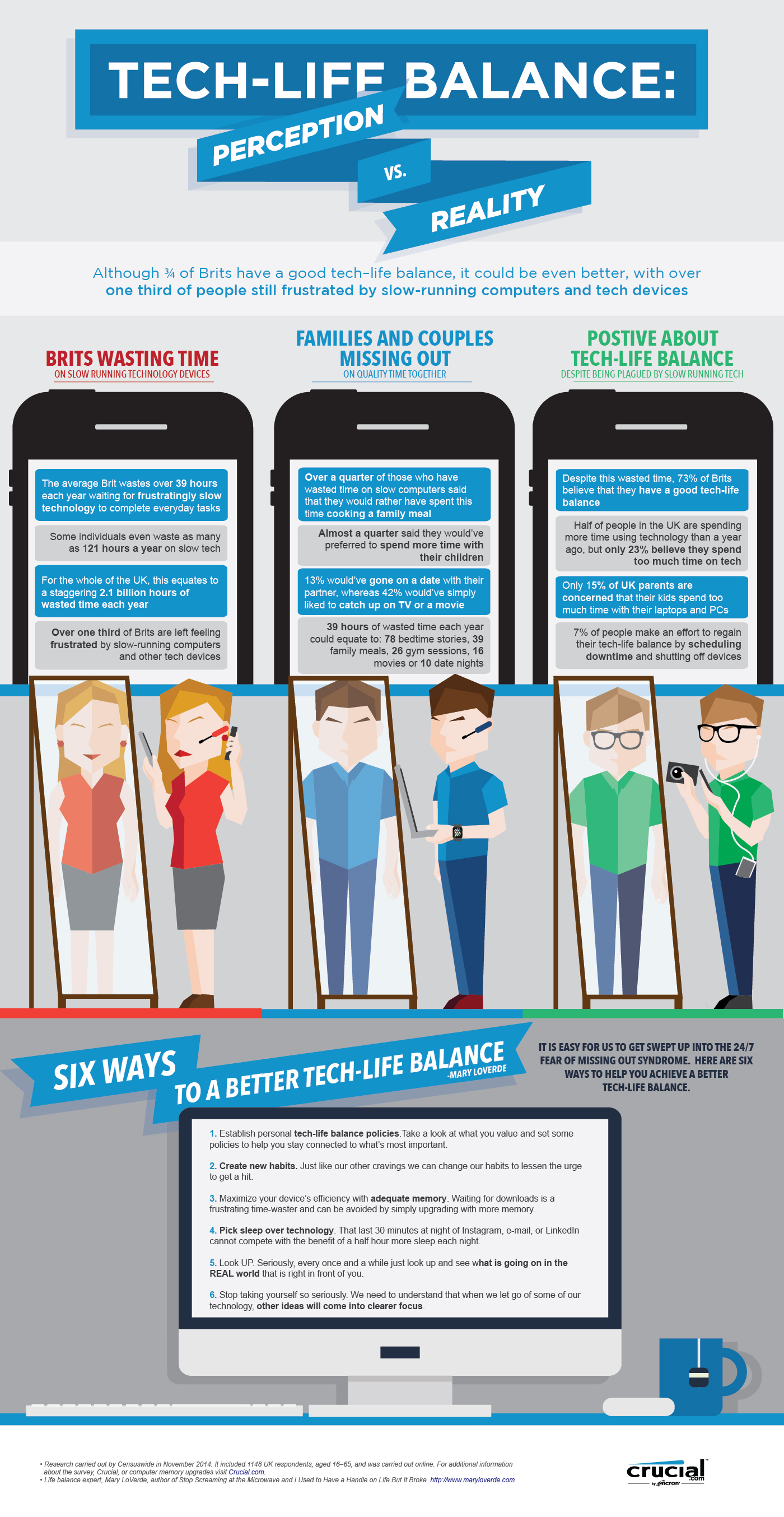
Photo credit: Dan Kosmayer/Shutterstock
-

Samsung U28D590D: An affordable UHD 4K 28-inch monitor [Review]
Publié: novembre 21, 2014, 1:03pm CET par Wayne Williams
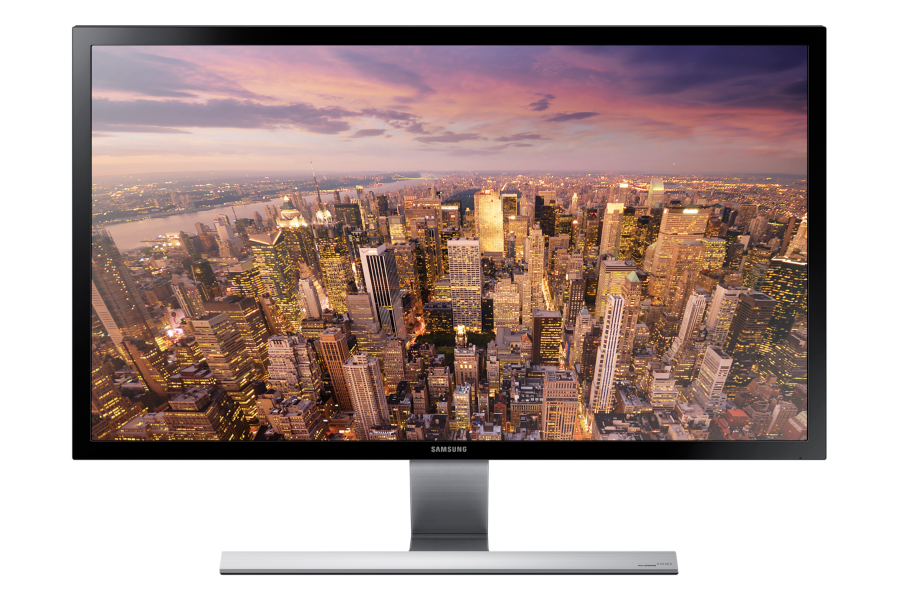
4K displays are becoming much more common, giving buyers a far greater range of choices. The Samsung Series 5 UHD LED Monitor (U28D590D) does a good job of balancing quality with affordability -- just £419.99 from Ebuyer.com including VAT and delivery -- and takes seconds to setup.
The 28-inch LED edge-lit screen offers a native resolution of 3840×2160 pixels, and the monitor sports a black plastic casing with a glossy bezel and an aluminum T-shape stand. Putting it together is just a matter of screwing the neck to the stand (using two pre-installed screws) and then sliding the screen into the neck.
The last monitor I looked at, AOC’s Q2770PQU, lets you adjust the height and tilt, and even spin it from horizontal to vertical. With Samsung’s offering you’re limited to a bit of backward and forward tilt. Depending what you use the display for that’s likely going to be enough flexibility, although another downside is it’s not the most stable of stands. Give it a sharp tap on the top and it will wobble like mad, although it’s not going to fall over.
From a design point of view, the U28D590D is about as simple as they come. There are no buttons or ports anywhere to be found on the front or sides, just a small blue LED at the bottom right to tell you when the screen is on standby or working (depending on your preference). Everything else is on the rear, and again there’s not much to report. In the center of the back are two HDMI 1.4 sockets and a Display Port 1.2 input. On the right of those are DC 14V power and 3.5mm headphone sockets (there are no built-in speakers sadly).
The screen doesn’t contain the power circuitry, so that means you’ll have to find a hiding place for the external power brick.
The only button is on the back towards the bottom left (or the right, as you look at the screen). This is a multi-directional JOG controller which lets you turn the screen on or off, and access the settings. Clicking it displays a small menu on the right side. From here you can go up to select the Menu, right to access PIP/PBP (Picture-In-Picture and Picture-By-Picture), down to power off, or left to switch between sources. It’s very intuitive, and I like this approach a lot although I appreciate some people prefer dedicated buttons. From the menu you can access Picture and Screen settings, and open Options (Language, Display Time and Transparency) and Settings (Eco Saving, PC/AV mode, Source Detection, Key Repeat Time, Off Timer, and LED Status). There’s also an Information option which will let you see at a glance the source you’re using, resolution, and refresh rate.
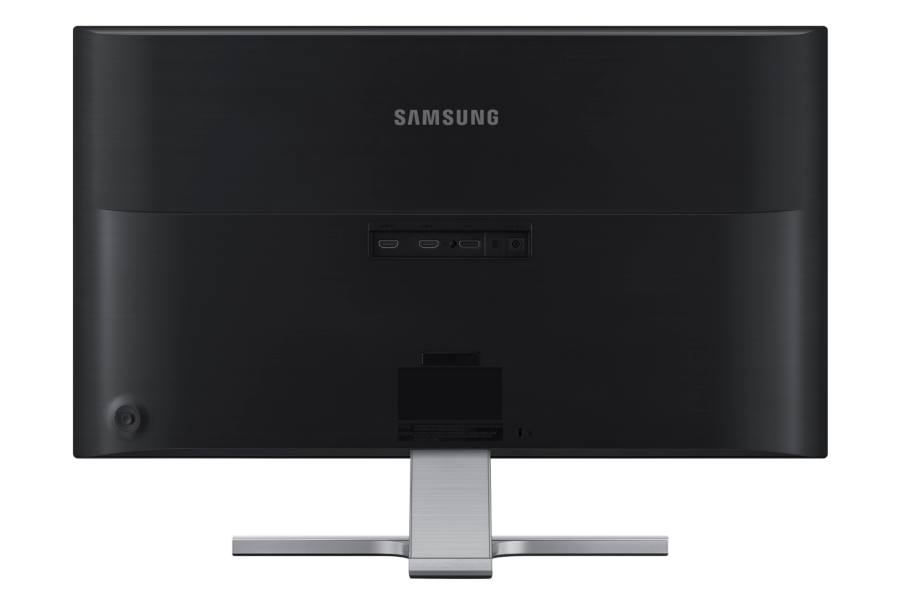
The two HDMI 1.4 ports support 3840×2160 at 30 frames per second, which looks pretty damn good. But if you want to really get the most out of the screen, then you’ll need to make use of DisplayPort which supports 3840×2160 at 60fps, and offers a stunning gaming experience, provided you have a powerful enough graphics card. The screen comes with a Game Mode which improves the picture as you play, albeit fairly subtly.
The U28D590D has a TN (Twisted Nematic) Panel, so it delivers very fast response times (1ms), again making it great for gaming. Sure, this panel doesn’t offer as good color reproduction as an IPS screen, but Samsung attempts to make up for the panel’s "shortcomings" (if you can truly call them that), with its MagicBright and MagicAngle functions which can be enabled and configured in the menu. The latter option offers two lean back modes, a standing mode, a side mode, a group view, and a custom setting.
Can you see a difference when comparing the TN panel with a new IPS display? Yes, but only if you’re looking for it and even then the difference is minimal. I found the test panel’s uniformity to be pretty good, although the brightness did drop off a little towards the left hand edge of the panel, and the color temperature cooled a bit towards the right, but unless you’re very picky, you certainly won’t be disappointed with the U28D590D’s screen. Not for the money anyway.
A lot of the time you probably won’t get the most from the screen’s capabilities (when you’re emailing, or browsing the web for example), but when you do, the picture quality will definitely blow you away. YouTube offers a growing number of videos in 4K resolution, but watching something like TimeScapes is definitely recommended if you want to see exactly what this screen is capable of.
I’d have liked to see a greater selection of inputs (VGA and DVI) and with it sitting in the middle of my multi-monitor setup (flanked by 22 and 20 inch displays) I can’t help but think it would look great wall mounted, but there’s no option for that. A more flexible stand would be great (though I’d take VESA mounting capabilities), and speakers and USB ports would be welcome as well, but those are pretty minor quibbles.
If you’re looking for a 4K screen (and once you go 4K you can’t go back -- trust me) then this is an excellent, and affordable choice. Highly recommended.
You can buy it direct from Ebuyer.com for £419.99.
Specifications
Display
- Screen Size 70.8cm (28")
- Aspect Ratio[B2B] 16:09
- Panel Type TN
- BLU Type[B2B] LED
- Brightness 370cd/m2
- Contrast Ratio 1000:1 (Typical)
- Dynamic Contrast Ratio Mega ∞
- Resolution 3840x2160
- Response Time 1ms (GTG)
- Viewing Angle (H/V)[B2B] 170°/160°
- Color Support 1B
General Features
- Embedded Function Eco Saving, Samsung MagicAngle, Samsung MagicBright3, Off Timer, Image Size, UHD Upscale, PIP 2.0, PBP
- Additional PC S/W Easy Setting Box
- OS Compatibility Windows, Mac
- Windows Certification Windows 8.1
Interface
- Display Port 1
- HDMI 2
- Headphone 1
Power
- Power Supply AC100-240V (50/60Hz)
- Power Consumption 32W (Energy Star current test condition)
- Power Consumption (DPMS) (W)[B2B] 0.3W (Typical)
- Power Consumption (Stand-by) 0.3W (Typical)
- Type External Adaptor
Dimensions
- Set Dimension with Stand (WxHxD) 660.9x486.3x169.4 (mm)
- Set Dimension without Stand (WxHxD) 660.9x410.0x64.7 (mm)
- Package Dimension (WxHxD) 794x452x109 (mm)
Weight
- Set Weight with Stand 5.65 Kg
- Set Weight without Stand 5.05 Kg
- Package Weight 7.4 Kg
Included
- Cables HDMI Cable, DP Cable
- Others Install CD (Manual), Quick Setup Guide
-

Microsoft reveals its Black Friday deals -- snap up a Surface Pro 3 bargain
Publié: novembre 20, 2014, 4:58pm CET par Wayne Williams
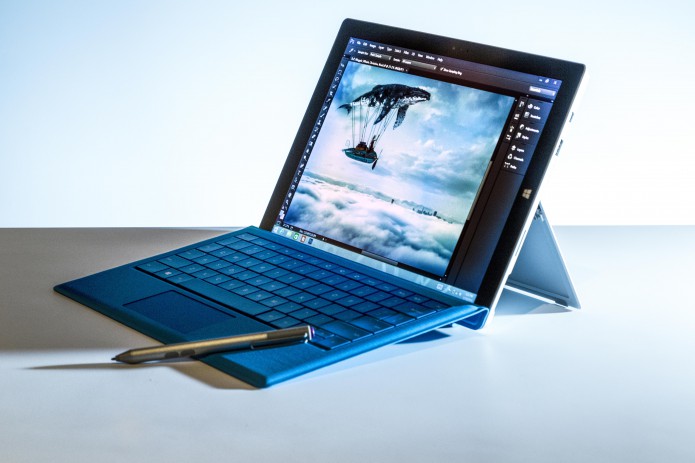
You can’t have failed to have noticed that Black Friday is nearly upon us, with a wide range of deals being offered by pretty much every retailer and manufacturer.
It will come as no surprise then, that Microsoft is preparing its own raft of offers, covering everything from Surface Pro 3 and Surface 2, to Xbox One and Lumia 830. If you’ve had your eye on any of those products, now is the time to get your wallet out.
Starting on November 27 and running up until December 1 (or while supplies last, naturally), customers in the US and Canada will be able to save $100 on a Surface Pro 3 i5, and $150 on a Surface Pro 3 i7. If you don’t need the very latest model, you can also save $150 off the price of Surface 2.
These deals are available through Microsoft retail stores, Microsoftstore.com, Best Buy and other select retailers.
Xbox One will be available to buy priced from $349 at participating retailers, and purchasers of the new Nokia Lumia 830 will get a Fitbit Flex ($99.99 value) thrown in for free. Staples is offering $150 savings on the ASUS EeeBook X205TA, making it a total bargain at $99.99. It’s an in-store only offer though, so you might struggle to find one.
You can keep an eye on this holiday season’s deals (new Cyber Monday offerings are planned) at Microsoft.com.
-

Free up space in Windows 10 with the new Disk Cleanup System Compression feature
Publié: novembre 19, 2014, 8:37pm CET par Wayne Williams
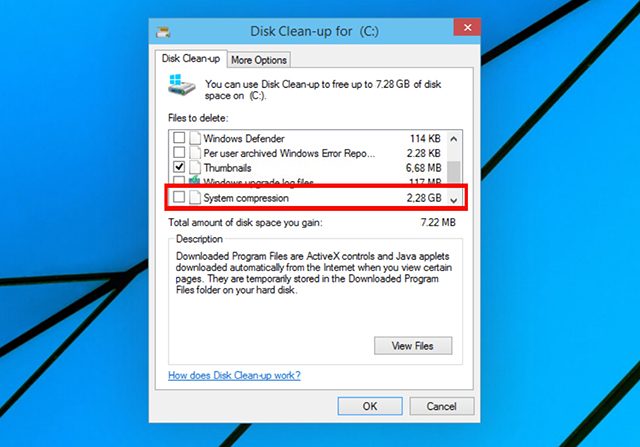
Windows 10 Technical Preview is very much an early work in progress. Microsoft is releasing new builds on a fairly regular basis (although the next one isn’t expected until the New Year), and implementing changes based on user feedback. Personally I’m liking what I’m seeing so far.
Although Microsoft discusses the major new features and changes in each build, there’s still some hidden functionality that you may not be aware of. Case in point is the little known System Compression option tucked away in Disk Cleanup.
Disk Cleanup is, of course, a feature that’s been in Windows for ages. You use it to remove junk from your computer, freeing up space. It can remove downloaded program files, temporary files, temporary Windows installation files, offline web pages, and log files, as well as empty the recycle bin and remove old thumbnails. However, in the latest Windows 10 build there’s a new feature which can compress files. This was something Microsoft used to offer in XP and removed in Vista, but now it’s back.
To try the feature, click the Start button and in the search box type "cleanmgr.exe". Right-click the option and launch it as an administrator.
Disk Cleanup will check your system and then present you with a list of things that can be removed to free up space. Scroll down and you’ll see a "System Compression" option. Although this will tell you how much space can be gained, there’s no way of knowing exactly what it’s proposing to compress. The description says simply "Compress windows binaries and program files". Helpful.
Since there’s no information about what it’s doing, you should approach this feature with care, but provided you’re not using Windows 10 as your primary OS, it’s worth having a play with it. I have yet to encounter any problems after running it.
-

Life after Microsoft -- Nokia's new N1 is an Android tablet that looks like an iPad
Publié: novembre 18, 2014, 11:19am CET par Wayne Williams

After Nokia sold its Devices and Services division to Microsoft, you might not have expected to see any great new mobile products coming from the Finnish firm, but you’d be wrong.
Today at the Slush conference in Helsinki, Nokia took the wraps off a new Android tablet -- the N1.
The device measures 200.7mm x 138.6mm x 6.9mm, has a 7.9-inch display (2048x1536 resolution), weighs 318g, and looks not dissimilar to the iPad mini. It has a one-piece aluminum body with a sandblasted satin finish. Inside there’s an Intel 64-bit Atom Processor Z3580 running at 2.3 GHz.
The N1 sports an 8 MP rear-facing camera with autofocus that’s capable of 1080p video recording, and a 5 MP front-facing camera with fixed focus.
It comes with 2 GB of RAM, 32 GB of storage, and is powered by a 18.5 Wh (5300 mAh) rechargeable lithium polymer battery. It’s a Wi-Fi (802.11a/b/g/n/ac) only device.
The N1 also sports a microUSB 2.0 socket with a Type-C reversible connector, and two 0.5 W stereo speakers.
As you’d expect, the operating system is Android 5.0 Lollipop, but it comes with Nokia’s Z Launcher on top. This lets you find whatever you’re looking for by scribbling a letter or two. It also adapts to where you are and what you’re doing.
"We are pleased to bring the Nokia brand back into consumers' hands with the N1 Android tablet, and to help make sophisticated technologies simple," said Sebastian Nyström, Head of Products at Nokia Technologies. "The N1 has a delightfully intuitive interface and an industrial design to match it. This is a great product for Nokia fans and everyone who has not found the right Android tablet yet".
The Nokia N1 is available in Natural Aluminum or Lava Gray colors and will be priced at $249 (plus taxes). It will be sold initially in China from Q1 2015, with more markets to follow.
What do you think of the N1? Would you buy it?

-

Energous: Wirelessly charging electrical devices over-the-air is safe and not wasteful [Q&A]
Publié: novembre 17, 2014, 12:44pm CET par Wayne Williams
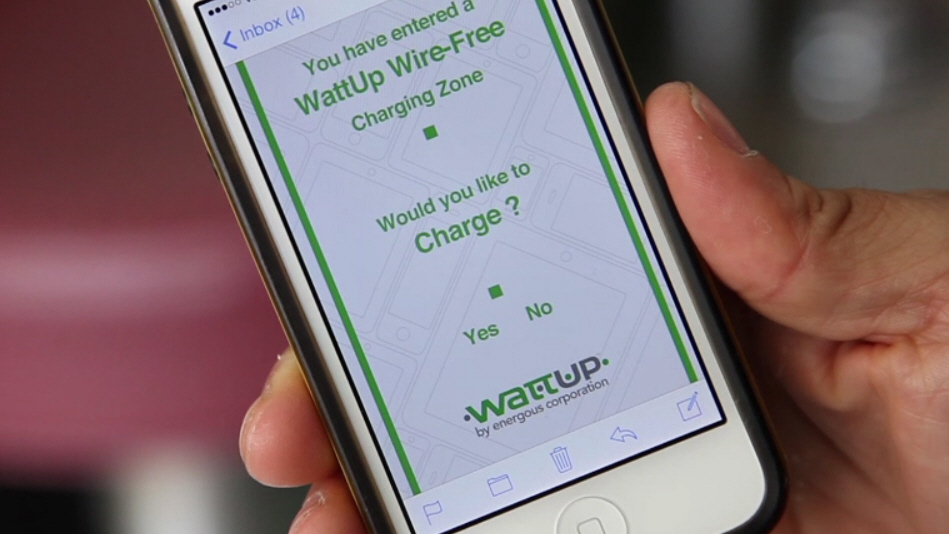
Three weeks ago, Energous announced a partnership with appliance manufacturer Haier Wireless, to add its WattUp wire-free charging transmitters to a wide range of home appliances. This will allow phones, tablets and other devices to charge over-the-air, just by being in range of an equipped appliance, such as a washer, microwave or fridge.
I spoke to Gordon Bell, Director of Marketing for Energous, to find out more about WattUp and the company's future plans.
How does WattUp work?
WattUp delivers energy utilizing the unlicensed ISM band, delivering energy locally to a specific device that is enabled and registered to be charged.
Is it safe?
Much like your cell phone is considered to be safe, we believe the WattUp technology is safe. We will be doing the exact same testing that is done on cell phones for safety and interference. As it relates to safety there are three underlying facts of interest.
1. The frequency we are using, in the 5GHz band is much less penetrative than a cell signal.
2. The power density per antenna compared to your cell phone is much less as well.
3. Our device that is on your phone/wearable is a receiver of power, not a transmitter.
Isn't it wasteful, charging devices in range continually?
WattUp transmitters sense devices via Bluetooth and only send power when needed, and only to those devices. WattUp is software controlled, giving users the ability to determine which devices receive power. Users can prioritize certain devices over others or charge them simultaneously. If there are no recognizable devices within range, the WattUp transmitter becomes idle and no power is lost.
Similarly, won't charging devices all the time cause the batteries to lose the ability to hold a charge?
As the WattUp solution is software controlled, users can determine how and when they receive a charge.
When will the first WattUp enabled appliances become available?
We are working with our current strategic partners to have demonstrable products at CES 2015 in January. We expect to be able to provide our partners the enabling technologies in time to meet 4th quarter 2015 shipments.
Are they likely to cost a lot more?
Ultimately, partners will determine pricing for their products. Our partners expect WattUp-enabled devices to be priced at attractive levels for consumers.
What countries will they be available in?
We expect it to become available globally.
What devices/models/manufacturers will support WattUp charging?
This is a question for our partners. Currently they are considering WattUp for a wide range of popular products, beginning with smartphone accessories and wearables.
-

Exclusive: Get 6 months of Bitdefender Total Security 2015 -- FREE!
Publié: novembre 13, 2014, 9:00am CET par Wayne Williams

Bitdefender Total Security 2015 helps you fight off the most sophisticated e-threats, from viruses to identity thieves and every trick in-between. Designed for the best user experience, the program offers full anti-malware defense as well as other advanced safeguards including dedicated online banking and e-shopping security, device anti-theft, highly secured online backup and sync, social networking protection, and more.
It retails for $59.95, but you can try it completely free for six months. This is the very latest version of the software too, and the full thing -- not some cut down, feature limited version.
Top Features include:
- OneClick Security -- Engages security with a single click. Bitdefender OneClick Optimizer automatically speeds up your system and frees up disk space by running every known optimization. All in one click.
- Bitdefender Profiles -- Prevents other applications from slowing you down when you Work, Play or Watch Movies.
- Autopilot -- Provides a hassle-free experience by making optimal security-related decisions with no input from you.
- Two-Way Firewall -- Monitors your Internet connections and prevents unauthorized access, even over a Wi-Fi network.
- Device Anti-Theft -- Locks, wipes or even locates your laptop from any Internet-connected device you have at hand.
Bitdefender Total Security 2015 uses the innovative Photon technology that adapts to each PC and makes scanning extremely fast and non-intrusive. It comes with Profiles, a new feature that optimizes system resources to enhance your experience when playing games, watching movies or working.
Bitdefender, which was awarded Best Protection by independent analysts for three years in a row, also ensures the fastest system speed, as confirmed by the AV-Test Labs.
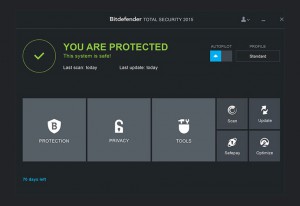 Benefits include:
Benefits include: - Offers best protection and best performance.
- Easy to use and simple to understand -- manage security with one click.
- Imperceptible, your PC will run extremely fast and silent.
- Secures all your data online.
- Helps recover your device in case of theft.
To start using Bitdefender Total Security 2015 for free, click here and enter your email address. Bitdefender will email you the license.
Hurry up though as this giveaway is only available for 72 hours!
-

Windows 10 Technical Preview Build 9879 arrives -- here's what's new
Publié: novembre 12, 2014, 9:28pm CET par Wayne Williams
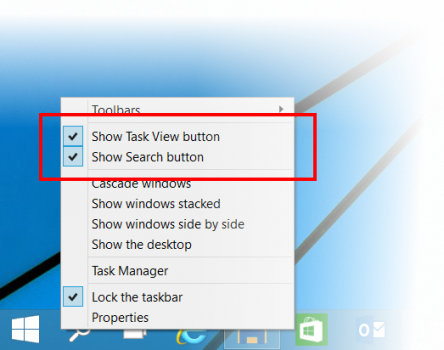
If you’re using/testing the preview version of Microsoft’s operating system as one of the million+ "Windows Insiders", get ready for a big update. Build 9879 is arriving today and will be with you shortly, if it isn’t already.
Microsoft's Gabe Aul has provided a handy run through detailing all of the major changes, but one of the big additions is the ability to hide the Search and Task View buttons on the taskbar. That will please my colleague Mark Wilson who hates them. You’ll be able to toggle those off just by right-clicking the taskbar and disabling them in the context menu.
There are some minor cosmetic changes to the new OS too, such as the introduction of a "hamburger" button in Modern apps (replacing the three dots) which will give users access to the options.
The minimize and restore animations for apps introduced in the last build proved to be unpopular with testers, so they have been replaced. Some icons have been swapped in the new build also.
OneDrive syncing has been tweaked, so it’s now selective. You choose what should be synced to your PC. You can also now get to OneDrive through File Explorer. Right-clicking the OneDrive icon in the notification area will give you access to settings where you can configure everything.
The new build lets you pin favorite folders to Home in File Explorer and you can now use Snap Assist when snapping apps across multiple monitors. Microsoft has introduced some new three finger gestures for precision touchpads. These are:
- 3 finger up -> Task View
- 3 finger down -> Show Desktop
- 3 finger flick to left or right -> switches to previous app (go back 1)
- 3 finger move left or right -> Alt-Tab (Task View) pops up and you can select the app you want (remove fingers to select)
- 3 finger tap -> Search
Native MKV support has been made "more complete" in this build so you can now play MKV files in Windows Media Player and thumbnails and metadata will be shown in File Explorer.
Finally, Microsoft will be releasing each new build as an ISO, but there will be a delay between a build being made available to "fast track" testers, and everyone else.
This will be the last build of 2014, so expect the next release to be a sizable one when it rolls out in early 2015.
Are you still using Windows 10 Technical Preview? What do you think of the latest changes?
-

Woojer: A wearable subwoofer that lets you feel sound [Review]
Publié: novembre 11, 2014, 4:58pm CET par Wayne Williams
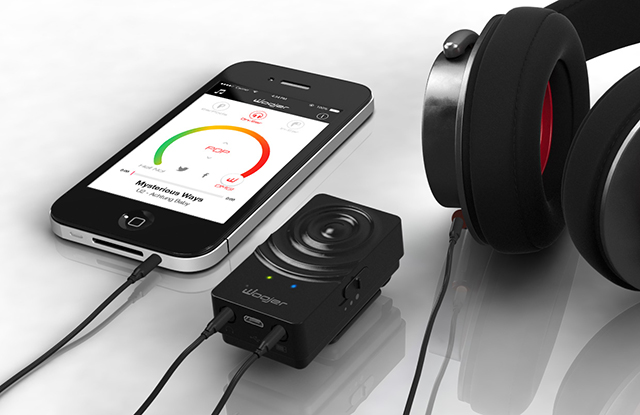
Music at a concert is different to music played at home, or in the car, because the high acoustic energy that surrounds you means you don't just hear the sounds, you feel them. There have been attempts in the past to marry sound with vibrations -- subwoofer chairs and vibrating vests, for example -- so that games or movies feel more realistic, but Woojer, which successfully raised $143,000 on Kickstarter, takes a subtler approach.
The matchbox sized subwoofer is worn on the body and connects between any audio source (your phone or a tablet, say) and headphones. The audio input -- be it a music track, a game or film -- is transformed into a tactile vibration, which you can feel throughout your body.
The device charges via microUSB and takes around three hours to charge fully. It can be worn in a choice of ways. There's a belt clip, a magnetic clip (so you can attach it to a shirt) and an optional sport strap. You can decide which to use, depending on what you're wearing. Obviously, the device needs to press against your body so you can feel the vibrations. It's best placed in the center of your chest or against the base of your spine, but you can also try it against your hipbone or collarbone.
You connect your audio device to the input (a male-to-male audio cable is supplied), and headphones to the output, turn Woojer on and start some audio playing. The device itself has an on/off switch on one side, and another switch to adjust the vibration levels. You're advised to disable any base boost or DSP (Digital Signal Processing) on your audio device when you first use Woojer.
The vibrations you feel are subtle, even when it's on the full vibration level, which is good because you don't want to feel like you're being thumped repeatedly in the chest or lower back when listening to music. It's designed to enhance the audio experience, not distract from it.
It can feel a bit uncomfortable at first as it's a little heavy (it's only 73 grams, but you do notice it when it's against your chest), but like anything, you soon get used to it. Does it add anything to the audio experience? Absolutely, although not in every case, obviously. If you enjoy listening to light flute music, you'll get nothing out of Woojer, but if you love music with a heavy bass, then it definitely enhances it. I enjoy audio-only games like Papa Sangre II, and Audio Defence: Zombie Arena, and in playing those I got to really appreciate what Woojer brings to the party. Those games are fairly scary as they are, but being able to feel the audio, instead of just hearing it, takes the terror factor up several notches. You get the same benefit watching action movies and horror films, and of course Woojer really shines in FPS games.
There's a free bass-enhancing app for iOS (Android coming soon) which offers eight settings designed for different genres of music (classical, electronic, dance, pop, rock, R&B, hip-hop, and flat), and you can use a slider to adjust the setting from anywhere between Hell No! and OMG!. You can also specify the type of headphone you have -- EarBuds, On-Ear or In-Ear. This all makes a big difference to the experience.
If you really want to feel your sound, there's an Extreme Kit available which comes with two Woojers, so you get double the impact.
It's perhaps a little pricey at $99.00 for the one unit, and $179.00 if you opt for the two-pack, but it's a very high quality device and if you like your music and it's something that appeals to you, then you definitely won't be disappointed. Woojer is available in a choice of colors -- Black, White, Red, and Green -- and can be purchased from www.woojer.com.
-

How to use Microsoft's new tool to create a Windows 8.1 installation disc or flash drive
Publié: novembre 10, 2014, 1:14pm CET par Wayne Williams
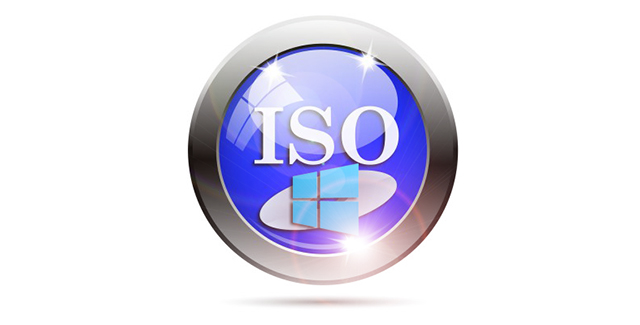
For some strange reason, when Microsoft released Windows 8.1 it forced Windows 8 users to update through the Windows Store. If you wanted to download an ISO file for installing how and when you liked, you either had to be an MSDN subscriber or use a couple of clever workarounds (as detailed here and here).
Thankfully, better late than never, Microsoft has finally come up with an official tool which will let you create your own Windows 8.1 installation DVD or USB flash drive. If you need to install Windows 8.1 from scratch, no longer do you need to install Windows 8 first, and then update through the store.
All you need to do is insert a blank DVD into your drive, or plug in a USB flash drive. Next go here, and click the Create Media button to download the Media Creation Tool (it’s a small 1.3MB file).
Choose the type of installation file you want to create by using the drop down boxes to select the Language, Edition (Windows 8.1, Windows 8.1 N, Windows 8.1 Pro and so on) and Architecture (x86 or x64).

Next choose where to save the installation file -- to a USB flash drive (you’ll need at least 4GB of free space and ideally the drive should be blank), or to your hard disk as an ISO ready for writing.
Click Next and the file will be downloaded. If you’re writing an ISO you'll need to enter the save location.

When it’s complete, you’ll be able to install the OS directly from the flash drive, or write it to DVD using any authoring tool.
If you’re running Windows 8, Microsoft still recommends you update your OS through the Windows Store although, frankly, using this tool is a much better -- and more reliable -- method.
If you’re running Windows 7, you’ll need to enter a Windows 8 or Windows 8.1 product key. You'll also need a product key if you're running Windows 8 and trying to upgrade to Windows 8.1 Pro.
Image Credit: ValentinT/Shutterstock
-

Raspberry Pi introduces the better, and cheaper Model A+
Publié: novembre 10, 2014, 11:51am CET par Wayne Williams
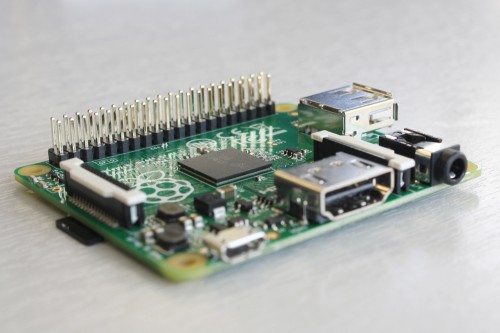
Raspberry Pi, the hugely popular credit card-sized ARM GNU/Linux computer, is available in two versions -- the Model A and the Model B. Four months ago the Raspberry Pi Foundation launched an updated version of the latter called the Model B+, which added more USB ports, more GPIO and microSD support (among other features). Impressively, the price remained the same -- $35.
Today the foundation announces an upgrade to the cut-down Model A called -- can you guess? -- the Model A+, and while it’s better than the A in several ways, it’s also smaller and cheaper.
While Model A retails for $25, the A+ is $20. It uses the same BCM2835 application processor and has the same 256MB of RAM, but it’s much smaller. Just 65mm long, compared to 86mm for the older Model A. It’s also more energy efficient, and gains many of the same improvements introduced in the Model B+ including:
- More GPIO -- The GPIO header has grown to 40 pins. The Model A+ is compatible with the HAT standard for add-on boards.
- Micro SD -- The old friction-fit SD card socket has been replaced with a much nicer push-push micro SD version.
- Better audio -- The audio circuit incorporates a dedicated low-noise power supply.
You can buy the Model A+ today from Farnell in the UK, and MCM in the US.
-

CNN finds the perfect use for a free Surface Pro 3 -- as an iPad stand
Publié: novembre 6, 2014, 1:21pm CET par Wayne Williams
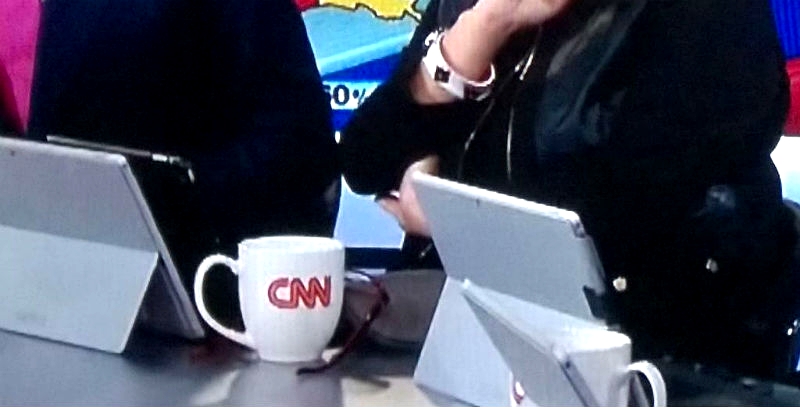
In an effort to drum up awareness about its Surface Pro 3 slate, Microsoft has been dishing out devices free to every TV show and broadcaster going, often sponsoring shows (aka filling them with incongruous product placement) and handing over cash to get the message out.
Unfortunately the message that seems to be coming across a fair bit lately is that the recipients prefer iPads. The CNN news team has certainly found a good use for the promotional Surfaces that Microsoft paid them to use -- the devices apparently make a good wall, behind which it’s possible to use Apple’s tablet surreptitiously on air. And as one newsreader discovered, Microsoft Surface also makes a wonderful stand to rest an iPad against.
It’s all rather embarrassing for Microsoft as it suggests that Surface Pro 3 either isn’t up to the task for which it’s being provided, or that the people who are being given them, really don’t want them and would rather use a device of their own choosing.
CNN's Jake Tapper (pictured using the iPad below) responded to the controversy, claiming it was "false and idiotic" and stating he was using both tablets -- Surface Pro 3 to look at exit poll stats and the iPad for tweeting. His response smacks of damage limitation of course, and even if true it's still hardly a win for Microsoft which makes a big deal of the fact that Surface users can snap two windows side by side -- exit polls and Twitter for example...
This isn’t the only marketing fail Surface’s promotional team has faced. Microsoft paid the NFL a reported $400 million to use its slates, only to find them being referred to, repeatedly, as "iPads" by commentators on Fox, ESPN and other networks.
The problem that Microsoft faces is the iPad is synonymous with tablets -- I once heard someone refer to their friend’s Surface Pro 3 as a "Microsoft iPad" -- and every time a Surface appears on screen, there are going to be people everywhere assuming it’s just a big iPad in a fancy case. Apple must be loving the free publicity Microsoft is paying for.
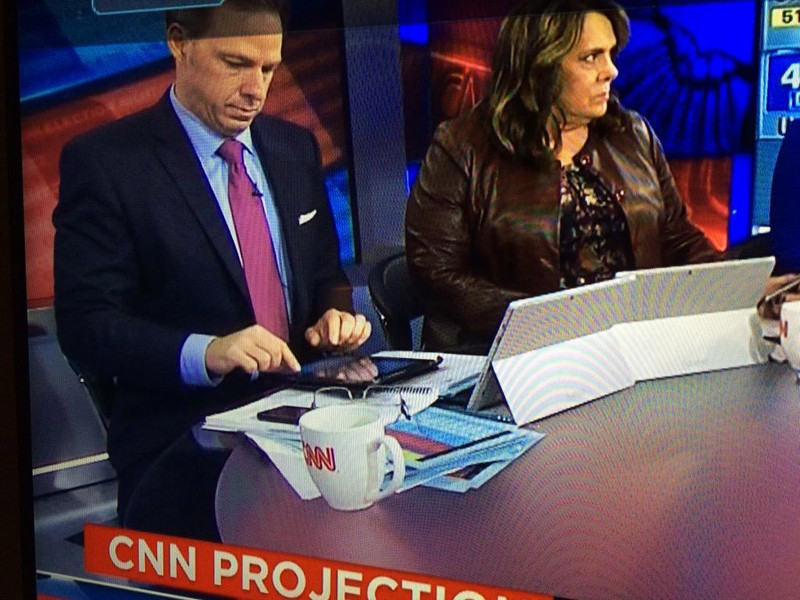
Image Credits: AdamUCF/Melbourneer
-

AOC Q2770PQU: A fantastic, and surprisingly affordable 27-inch WQHD monitor [Review]
Publié: novembre 5, 2014, 4:14pm CET par Wayne Williams
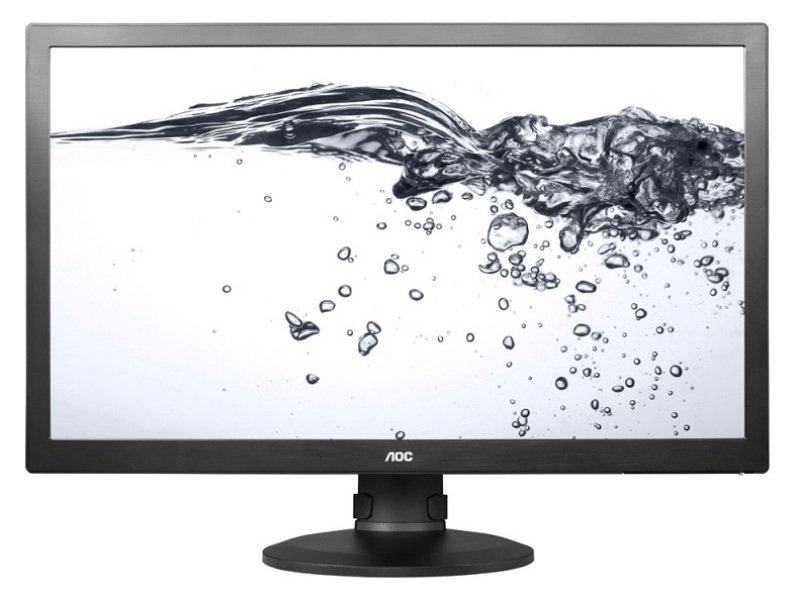
If you’re considering buying a 27-inch monitor, you really need to be looking at one which offers WQHD resolution (2560 x 1440), rather than the standard Full HD (1920 x 1080) found in a lot of models. The pixels per inch difference (108.79 PPI vs 81.59 PPI) will result in a much greater level of detail and clarity which, if you’re working with images, you’ll definitely notice and appreciate.
The problem with buying a 27-inch WQHD screen is cost, but AOC’s offering is a lot more affordable than most -- just £360 from Ebuyer including VAT and delivery -- and it offers an awful lot for the money, including a fully adjustable stand, so you can use the screen in both landscape and portrait modes.
First impressions aren’t immediately favorable, it has to be said. When you get the AOC Q2770PQU out of the box, it feels cheap. Savings have been made, and it’s with the chassis and stand. Both feel plasticky and lightweight. The stand doesn’t seem very stable, and at that point you may be wishing you’d spent a little extra on a different model. However, once it’s all set up (and the process takes seconds), you’ll realize there’s a benefit to the lightweight nature of the stand -- it can be adjusted easily, and there’s a lot of flexibility with positioning, which is important in a large monitor. You can adjust the height by 130mm, tilt and swivel the screen as you like (it tilts from between 5 and 25 degrees), and as I mentioned earlier, you can rotate the screen and use it in portrait mode. It can be wall-mounted as well, if you prefer.
The monitor comes with DisplayPort, Dual Link DVI, HDMI and old-school VGA inputs on the rear, as well as 3.5mm audio input and outputs. There are also two USB 2.0 ports at the back, and two USB 3.0 ports on the right edge, including one with fast charging that you can use to charge a phone, tablet or other USB device when the monitor is on standby. There are two 2w integrated speakers as well. These are passable, but you may not want to listen to a rousing symphony on them.
While the casing might feel cheap, the screen certainly doesn’t. It’s a Samsung Super PLS (Plane-to-Line Switching) panel (which is similar to IPS technology), and offers a bright, sharp display with natural colors and consistency at wide viewing angles. Depending on the environment where you’ll be using the monitor, you may want to make some adjustments to the display settings. The buttons on the underside of the front edge let you switch between inputs, enable and adjust Clear Vision (you can choose from Off, Weak, Medium or Strong), and tweak the luminance, color, picture boost and more. Adjusting the settings is a little tricky, as you have to feel around under the frame to find the buttons and work out what they do, but that’s a minor quibble and you’ll likely only need to do it once or twice.
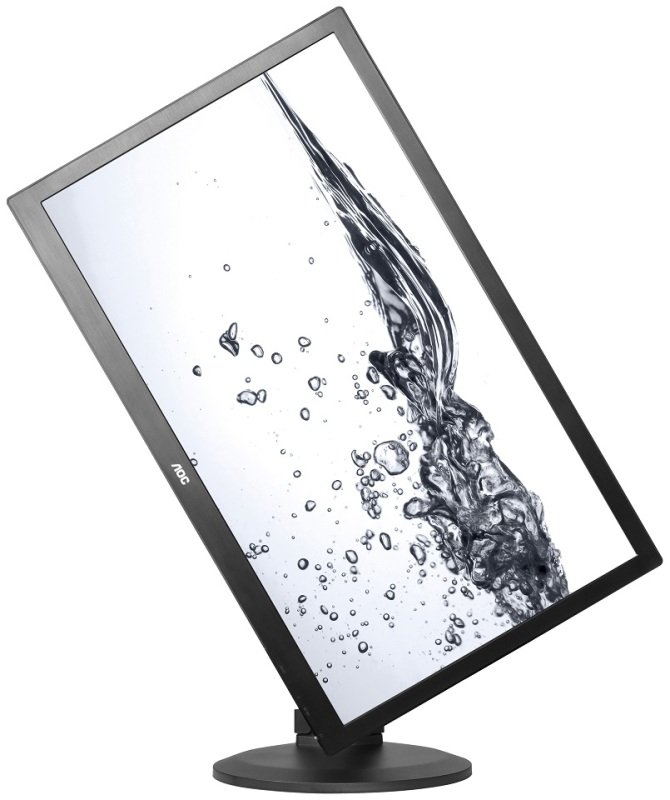
I had no issues with dead pixels, or back light bleed (BLB), and the color was excellent and uniform across the panel. In fact I have no complaints about the quality of the display at all. Games and movies look fantastic, and it’s great for photo and video editing.
The size of the display is perhaps a little daunting if you're used to smaller screens (I've been using it as part of a three monitor set up, which led to a major workout for both eyes and mouse!) but the bundled Screen+ software lets you split the PC workspace into four self-contained panes, which makes it easier to run and view multiple applications at the same time.
As well as the screen itself, the box contains a UK power cable, USB lead, DVI, VGA and HDMI cables and an audio lead.
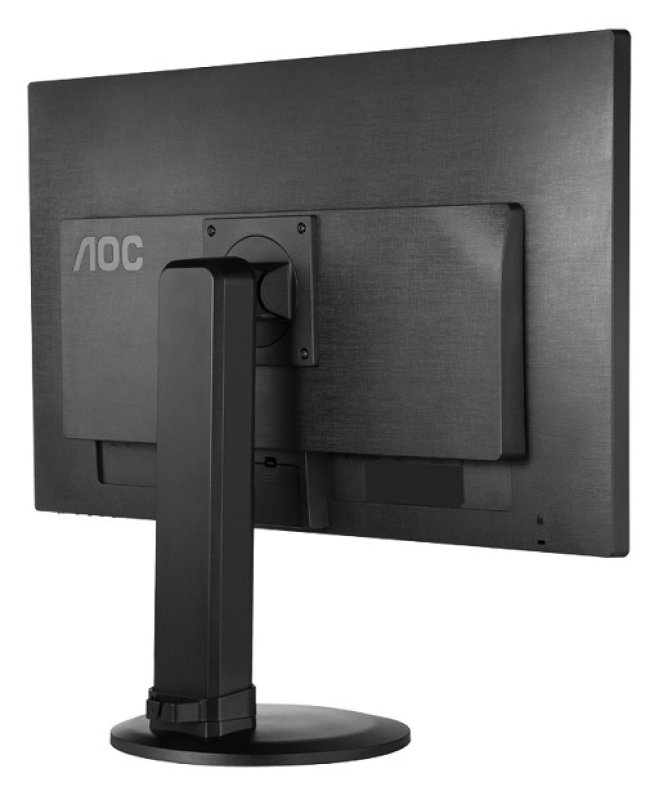
Verdict
It took me a while to find the optimal viewing positioning and configure everything to suit my eyesight and environment, but once that was all sorted, I couldn’t be happier with the results. At £359.99, AOC Q2770PQU offers excellent value for money and if you’re in the market for a large WQHD display, this should be at the top of your shopping list.
You can buy it direct from Ebuyer.com.
Specifications
Panel size 27 inch Screen Ratio 16:9 Response Time (Typical) 5ms Recommended Resolution 2560x1440 (HDMI/DisplayPort/Dual-link DVI),1920x1080 (Analog) Contrast Ratio 1000:1 (Typical)
80000000:1 (DCR)Brightness (Typical) 300 cd/m² Display Color 16.7M Viewing Angle (H/V) 178/178 Viewable Image Size (mm) 686 Display Area (mm) 597.89 (H)×336.31 (V)mm Pixel Pitch (mm) 0.233(H)×0.233 (V)mm Scan Frequency (H/V) 30-99KHz/ 50-76Hz Pixel Frequency 300MHz Input Signal DisplayPort 1.2, HDMI 1.4, Dual Link DVI, Analog Input Connector DisplayPort, HDMI, Dual Link DVI, Analog Cable Analog, DVI,HDMI, Audio & DP( By region) Built-in Speaker Yes HDCP Compatible Yes Input Power 100-240VAC, 50/60Hz Power Supply Built in Operating Mode (W) 65 Standby Mode (W) <0.5W Wall Mount VESA 100x100mm Cabinet Color Black Size w/Base (W×H×D) mm 642.2 x 558 x 245 Package Box (W×H×D) mm 759 x 486 x 286 Weight (Net/ Gross)(Kg) TBC Tilt -5°~25° Pivot -5°~25° Height Adjustment 130mm Swivel TBC Kensington lock YES Temperature Operating 0°C ~+40°C Temperature Non-Operating -25°C - 55°C Humidity Operating 10% to 85% Humidity Non-Operating 5% to 93% Altitude Operating 12,000 feet Altitude Non-Operating 40,000 feet Plug & Play VESA DDC2B™ & DDC2B/CI User Control Source/Auto/Exit,left/Clear Vision,
Right/Volume+, Menu/Enter,PowerUSB plug N/A OSD Languages 16 languages Safety Regulation CCC/CQC/C-Tick/CB/CE/FCC/C-Tick N26268
cTUVus/EPA/TUV-GS/ISO9241-307/Win8/CECP
ERGO/EU RoHS Doc/ SASO/BSMI/VCCI / J Moss
e-Standby/CU/J-moss/TCO6.*/ KCC/KC
REACH DoC/RoHS/WEEE/TUV-S
EU Energy Label w/ Test report/Ukarin Safety/EUP -

Oculus Rift VR headset to go on sale in time for Christmas 2015
Publié: novembre 5, 2014, 1:08pm CET par Wayne Williams
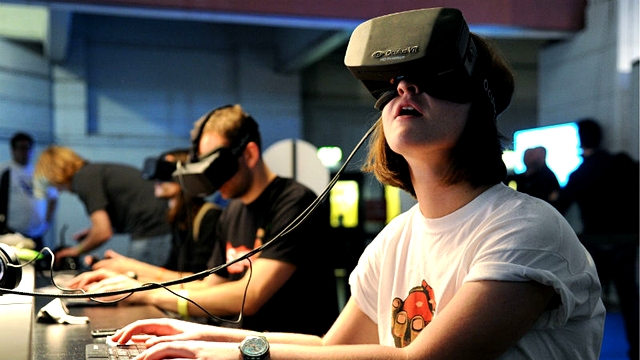
If you’re desperate to get your hands on a consumer version of Oculus VR’s flagship virtual reality headset, there’s good news and bad.
Speaking at the Web Summit technology conference in Dublin on Tuesday, Brendan Iribe, founder and CEO of Oculus VR, said that it would be "months, not years" before the highly anticipated product is made available to buy. But before you get too excited, Iribe clarified his statement by adding he meant "many months" -- so not any time soon.
From that information, it’s realistic to suggest that Oculus VR is hoping to get a version of its flagship Oculus Rift headset into consumers’ hands (and over their eyes) in time for next Christmas, which would be perfect timing.
Iribe admits he’s worried about the number of low quality rival virtual reality products that are already available, expressing concern that a poor experience with one of those will put people off trying -- and buying -- the Oculus Rift.
"We're a little worried about bigger companies putting out products that aren't ready. Disorientation and motion sickness is the elephant in the room. We're encouraging big companies not to put out a product before it’s ready," he said.
-

Now you can listen to BetaNews stories as well as read them
Publié: novembre 4, 2014, 5:52pm CET par Wayne Williams
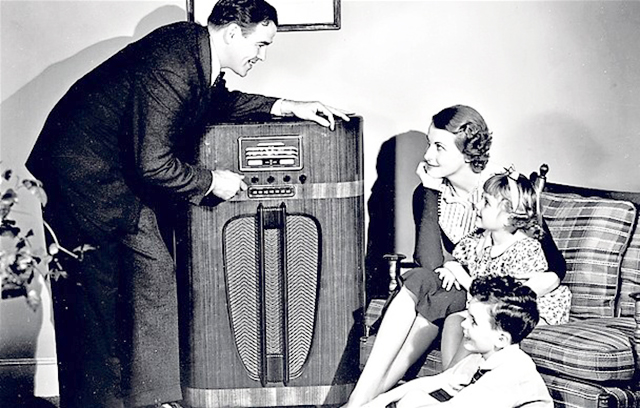
TuneIn is the world's largest mobile radio app with over 50 million monthly users. The company works with the likes of ESPN, BBC and Wall Street Journal, and now it will also be providing audio versions of BetaNews stories.
If you’re a regular visitor to our site, you may have noticed some stories have had an audio player at the top of the page (like the one above here). We’ve been trialling the service for a while, and now it’s ready to go fully live.
Not every story that’s published on BetaNews will be available in audio form, but if you encounter one that is (such as this, or PlayStation 4 sales double that of Xbox One in first year), all you need to do is click the play button and have the story read out to you. TuneIn only uses professional voice actors, there’s no nasty text-to-speech nonsense here.
The same stories will be broadcast on TuneIn. You can listen to the available content here, and also follow and share our channel.
As well as tuning in on the web, there are apps available for smartphones (iPhone, Android, Windows Phone, and BlackBerry), tablets (iPad, Android and Amazon Kindle), and televisions and connected devices. Browse the full selection here.
We’d love to know what you think about the audio versions of our stories, so please sound off in the comments below. Do you listen to any other content on TuneIn?
-

Adobe announces Brackets 1.0 and Extract for Brackets (Preview)
Publié: novembre 4, 2014, 3:07pm CET par Wayne Williams

Brackets is an open source text editor built with web technologies for web designers and developers. Adobe created the tool three years ago, and has been contributing to it ever since. Now, after 45 minor releases, Brackets finally hits the long awaited 1.0 milestone.
The program blends visual tools into the editor, making it easier to design in code. Recent additions include multiple cursors, split view, theme support, and more. The latest release also comes with a preview version of Extract for Brackets, which is a new Creative Cloud service that speeds up the process of pulling design information like colors, fonts and gradients out of a Photoshop file, and turning it into CSS.
You can also use the new addition to extract PSD layers as images, use file information to define preprocessor variables, and get dimensions between objects.
Extract for Brackets (Preview) is included with Brackets 1.0 but is also available as a standalone extension on the Brackets Extension Registry.
-

Malware on the rise, with Trojans by far the biggest threat
Publié: novembre 3, 2014, 3:15pm CET par Wayne Williams

Not worried about malware? Provided you take sensible precautions when on the web, and have decent anti-malware installed, your chances of getting infected are relatively low, but the threat still persists and isn’t to be underestimated.
According to PandaLabs, a total of 20 million new strains were created worldwide in the third quarter of 2014, which works out to 227,747 new samples being identified every day.
At the same time, more people were infected. PandaLabs says the global infection ratio was 37.93 percent in Q3, up just over 1 percent from Q2 (36.87 percent).
PandaLabs found that Trojans remain the most common form of malware by a long way (78.08 percent), and were also the source of most infections too -- 75 percent, up from 62.80 percent in the previous quarter. Viruses are a distant second threat (8.89 percent), followed by worms in third place (3.92 percent).
PUPs (Potentially Unwanted Programs) were responsible for 14.55 percent of all infections, followed by adware/spyware (6.88 percent), worms (2.09 percent), and viruses (1.48 percent).
Luis Corrons, Technical Director of PandaLabs, says "In these last months we have seen how cyber-crime has continued to grow. Criminals haven’t ceased to create malware in order to infect as many systems as possible so as to access sensitive or confidential information. Corporate environments are also under attack," he added. "In the last three months many large companies have been drawn into numerous scandals, including the so-called 'Celebgate', where nude photos of actresses and models hosted on Apple’s iCloud service were leaked, or the theft of passwords for Gmail and Dropbox".
Looking at infections globally, PandaLabs found China has the highest infection rates (49.83 percent), followed by Peru (42.38 percent) and Bolivia (42.12 percent). Norway (23.07 percent) and Sweden (23.44 percent) have the lowest infection rates, followed by Japan (24.02 percent).
Image Credit: wavebreakmedia / Shutterstock
-

PlayStation 4 sales double that of Xbox One in first year
Publié: novembre 3, 2014, 10:14am CET par Wayne Williams

If you’ve been following the sales of Microsoft and Sony’s next gen consoles, you’ll know that the PS4 has been outselling its rival each month. However, a year after they went on sale we finally get to see the scale of the sales difference between the two.
In the last quarter, Sony shipped 4.1 million PlayStations globally, of which 3.3 million were PlayStation 4s. Microsoft on the other hand shipped 2.4 million Xbox units. Now we don’t know how many of those were Xbox Ones, and how many were Xbox 360s (Microsoft doesn’t provide a breakdown), but given the older console still sells very well, it’s safe to assume the PS4 sales were double that of the Xbox One in that quarter. Now, let’s look at the bigger picture.
Since launch, the PS4 has shipped 13.5 million PlayStation 4’s. Microsoft hasn’t revealed exact Xbox One numbers since April when we heard that the tech giant had shipped 5 million Xbox One units. We do know it has shipped another 3.5 million Xbox One/Xbox 360 consoles after then (2.4 million this past quarter, and 1.1 million the quarter before). So we’re likely looking at a total of around 7 million Xbox Ones. If that’s correct, then the PS4 has sold nearly twice as many consoles as its rival. Interestingly, it looks as if the much derided Wii U has managed similar numbers to the Xbox One.
Before you jump up and down shouting "shipments aren’t sales" let me stop you there. You are right -- they aren’t. But in terms of consoles, shipments do usually translate into sales given a month or so. We’re not going to discover a few million PS4s sitting in warehouses (unlike, say, the original Surface). If Sony ships 4.1 million consoles in a quarter, it will likely have sold that figure, or close to, a month after the end of the quarter. Consoles shipments/sales isn’t a precise science, but it’s close enough.
Obviously it’s still very early days for both consoles. While the PS4 is comfortably outselling its rival, price cuts, new territories (the Xbox One finally arrived, officially, in China last month), and the launch of quality platform exclusive games can all have a major impact and shift the landscape significantly.
Either way, the 2014 holiday shopping season will certainly be an interesting one for both consoles.
Image Credit: maraga/Shutterstock
-

Windows 8.1 finally takes off -- shows staggering market share growth
Publié: novembre 1, 2014, 1:48pm CET par Wayne Williams
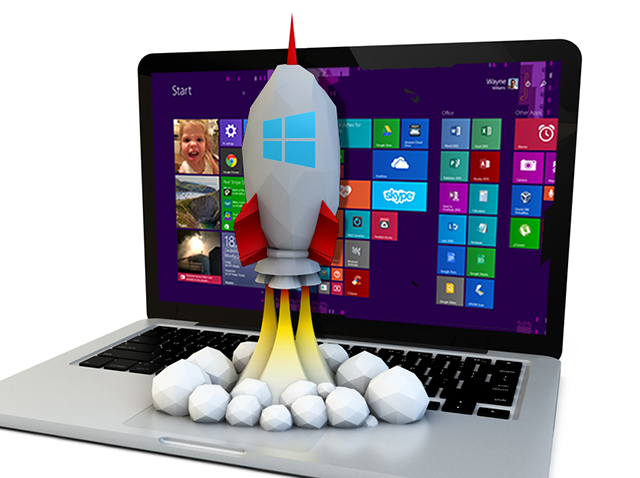
Hands up if you saw that coming? We’ve been so used to Windows 8 and 8.1 losing usage share month on month, that any kind of move in the right direction -- i.e. growth -- seems almost an anomaly. And when Windows 8.x does gain usage share, it’s usually pretty minimal.
Not in October. According to the latest usage share figures from web analytics firm NetMarketShare, Windows 8 use grew in that month, and Windows 8.1 (finally) took off like a rocket. In fact, Windows 8.1’s growth in that month is so impressive you’ve got to imagine the number crunchers at NetMarketShare spent a long time checking and re-checking their findings to make sure there wasn’t a mistake at their end.
In September, Windows 8 had 5.59 percent usage share. In October that rose to 5.88 percent. A gain of 0.29 percentage points. Minimal, but a shift in the right direction.
Windows 8.1 however, went from 6.67 percent in September to an astounding 10.92 percent in October. That’s a growth of 4.25 percentage points. In total, Windows 8.x grew by 4.54 percentage points in one month alone. Amazing stuff. In all, Windows 8.x now has 16.8 percent of the market. An all-time high for the tiled OS which last month lost 1.11 percentage points share.
Windows 7 remains easily the top operating system, and despite Windows 8.x gobbling up all that share, it also managed to post some growth, going from 52.71 percent to 53.05 percent, an improvement of 0.34 percentage points (so better than Windows 8).
The real loser then was (finally) Windows XP, which shed a massive 6.69 percentage points share, going from 23.87 percent in September to 17.18 percent in October.
It will be interesting to see what happens during November. Will Windows 8.x continue its upwards trajectory or crash back down to Earth? You’ll have to head back here next month to find out.
//
Photo Credit: Georgejmclittle/Shutterstock -

Frightening facts about email
Publié: octobre 31, 2014, 9:52am CET par Wayne Williams
 There are days when I get absolutely swamped with email -- my work and personal inboxes are frequently filled to bursting -- and I’m not alone in struggling with the never ending deluge of demanding messages.
There are days when I get absolutely swamped with email -- my work and personal inboxes are frequently filled to bursting -- and I’m not alone in struggling with the never ending deluge of demanding messages.Unroll.me, a service which helps users keep their inboxes under control, has put together a Halloween-themed infographic detailing some of the most frightening facts about email. Did you know, for example, that the average person in the US, spends four hours a day reading, composing and replying to messages?
Other scary facts covered include the scale of inbox overload -- some 122,500,453,020 emails are sent every hour globally. That’s every hour, not every day.
84 percent of email traffic in 2013 alone was spam, and 16 million phishing emails are sent each day.
Check out the full infographic below.
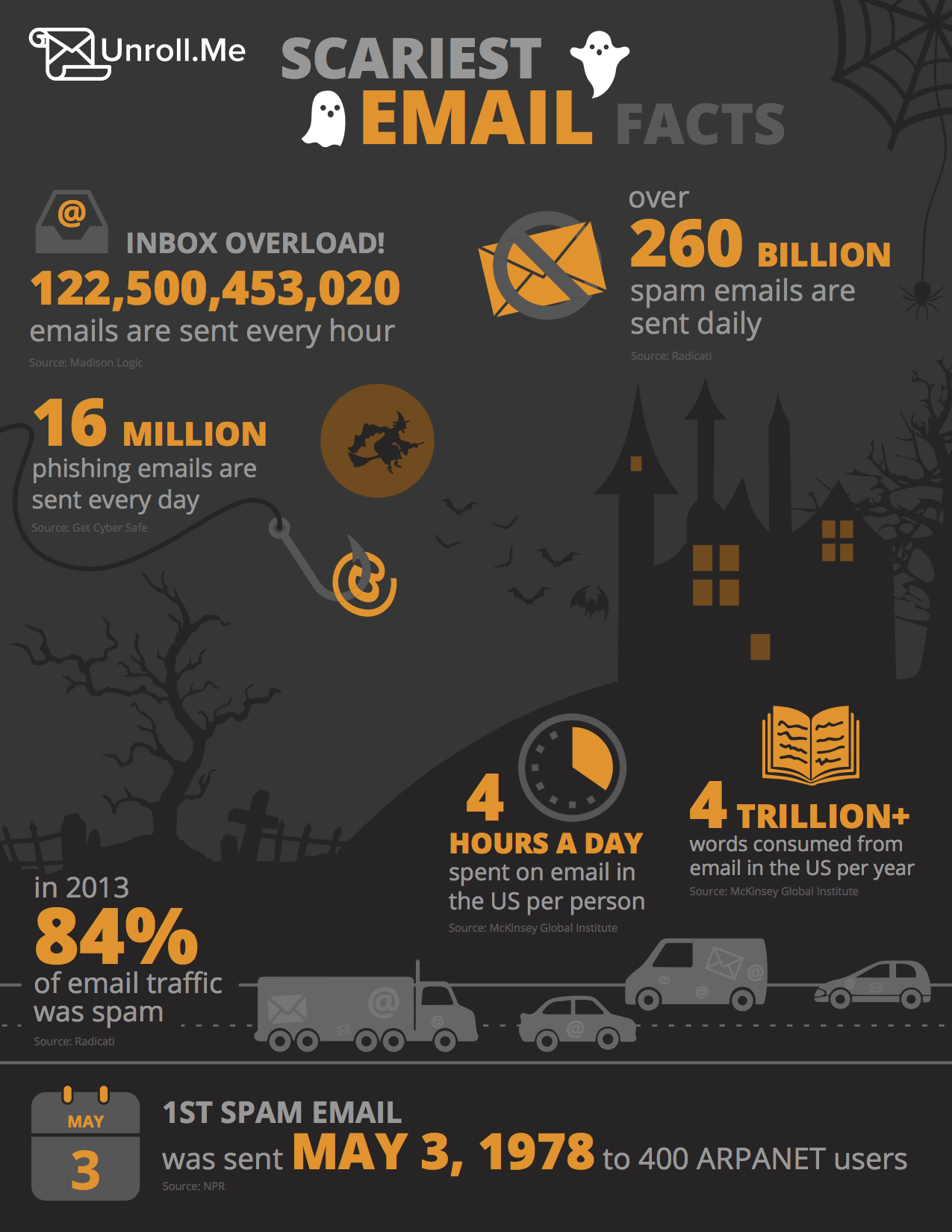
Image Credit: Adam Vilimek/ Shutterstock
-

10 clever ways Microsoft could improve Windows 10
Publié: octobre 30, 2014, 2:28pm CET par Wayne Williams
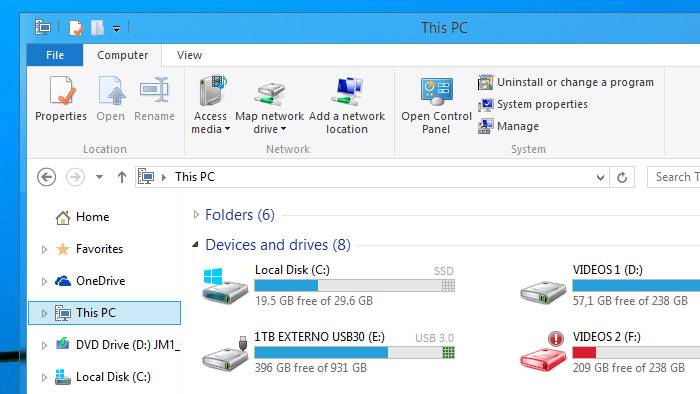
Aurélio "Baboo" knows what he wants to see in Microsoft’s next operating system, and has put together his own vision of Windows 10 "build 9928", spending over 50 hours on creating images in Photoshop that show the changes he thinks Microsoft should implement.
Top of his list, and that of many Windows users, is the return of Aero. Flat might be where it’s at right now, but there’s no question that adding some transparency effects to windows looks good, and I’d be happy to see Microsoft include this option in Windows 10. "I’m honestly not worried about the extra cents in energy consumption Aero that costs me when I’m using my desktop or laptop, because Windows is much more enjoyable with it", Baboo says.
Second on his wish list is the ability to easily back up Windows to the cloud using not only OneDrive but third party services like Dropbox. He also wants to see the option to create a system image. Adding third party services to the mix introduces potential security risks, but Microsoft could add a disclaimer, and give users the choice of where to backup their data.
The ability to back up and restore drivers from within Device Manager, Baboo’s third suggestion, is a great idea and while probably less than 1 percent of people will ever make use of it, it’s something I’d like to see implemented too.
Tabs in the Command Prompt, and in File Explorer are other suggestions that could definitely be useful. If you’ve ever used a third party file manager like Explorer++ then you’ll appreciate the benefits that tabs offer.
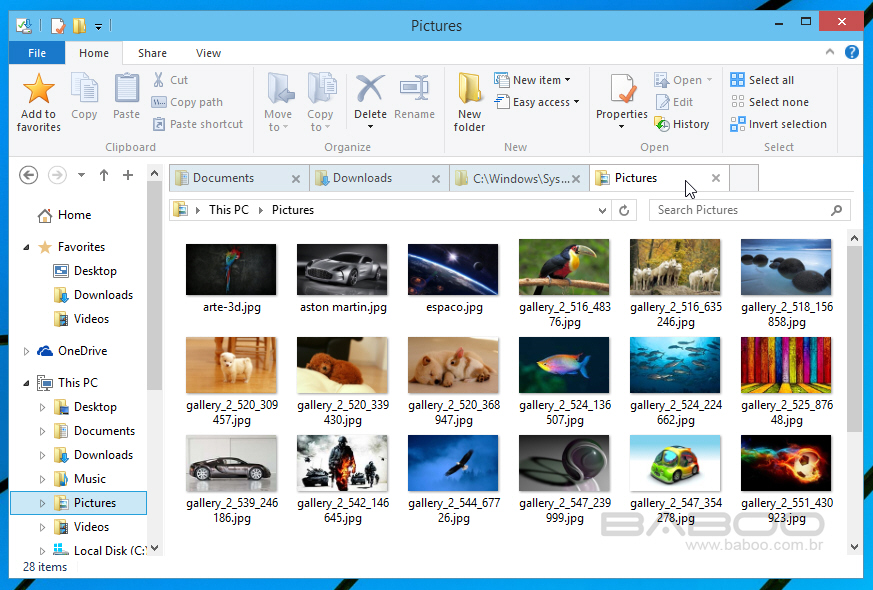
The introduction of a GPU section in the Performance area of the Task Manager I can personally live without, but others will find it useful.
Baboo suggests introducing an Optimize option that can remove useless registry entries, and run disk cleanup and a smart defrag in one go, which could help with regular maintenance. He also wants the Status Bar reintroduced, so that more options are available when viewing images.
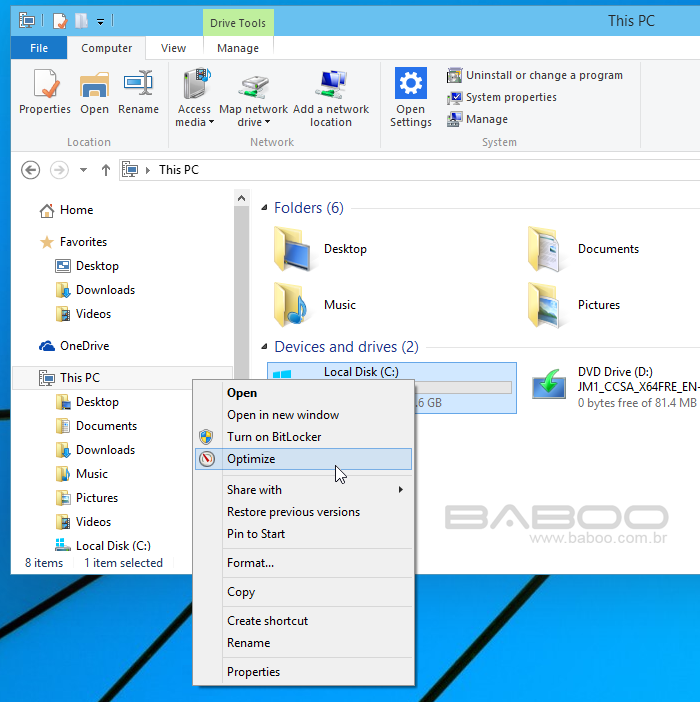
In This PC, Baboo would like to see much more information about drives and partitions, such as the type of disc, fragmentation status, and SMART status, which is something I’d definitely like to see implemented.
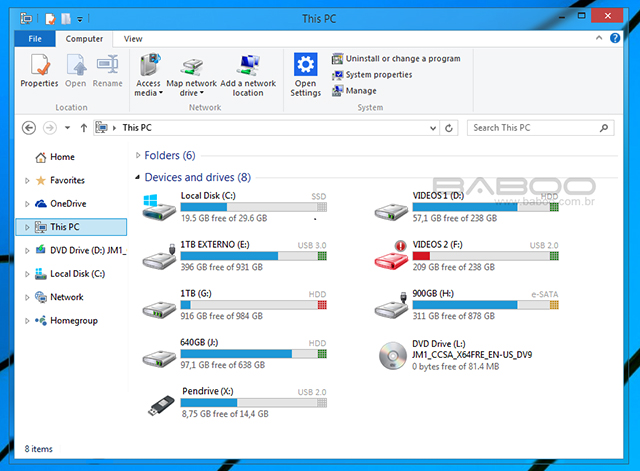
His tenth idea is improved zip support, which is something many people would welcome.
All in all, I think the ideas and suggestions that Baboo has come up with are great. They aren’t revolutionary, but they would definitely improve the future operating system which is why I wanted to share them here.
What’s your view on the ten suggestions (you can view the other images Baboo created here), and do you have any ideas of your own you’d like to see Microsoft implement? Leave your comments below.
-

Apple Pay rival CurrentC hacked -- email addresses stolen
Publié: octobre 29, 2014, 5:24pm CET par Wayne Williams
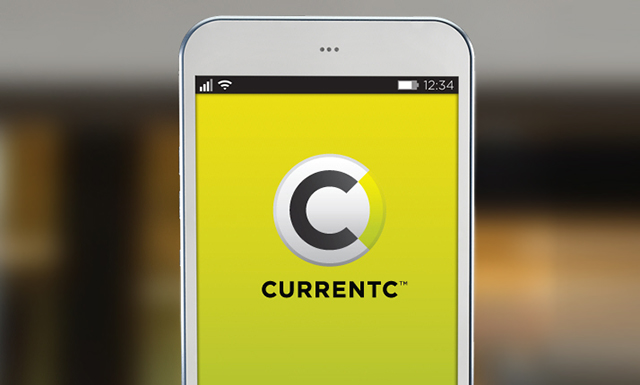
Yesterday, Ed Oswald wrote a story about the retailer-backed payment network CurrentC, describing it as a threat to iPhone and Android users alike. In the article he spoke about the security of the system, saying "CurrentC is overly complicated, and just leaves too many opportunities for something to go wrong, or a hacker to make their way in".
He turns out to have been spot on, as today MCX admits its service has already been hacked, with email addresses of participants in the pilot program and other interested individuals being stolen. Hardly the most auspicious of starts. The following email was sent to those affected:
Thank you for your interest in CurrentC. You are receiving this message because you are either a participant in our pilot program or requested information about CurrentC. Within the last 36 hours, we learned that unauthorized third parties obtained the e-mail addresses of some of you. Based on investigations conducted by MCX security personnel, only these e-mail addresses were involved and no other information.
In an abundance of caution, we wanted to make you aware of this incident and urge you not to open links or attachments from unknown third parties. Also know that neither CurrentC nor Merchant Customer Exchange (MCX) will ever send you emails asking for your financial account, social security number or other personally identifiable information. So if you are ever asked for this information in an email, you can be confident it is not from us and you should not respond.
MCX is continuing to investigate this situation and will provide updates as necessary. We take the security of your information extremely seriously, apologize for any inconvenience and thank you for your support of CurrentC.
The CurrentC mobile app itself wasn’t breached, but a hack this early on hardly inspires confidence and will come as a major blow to the payment network's credibility. MCX's claim that it takes "the security of your information extremely seriously" seems laughable when made in a message admitting to having failed to secure the email addresses of supporters of the service.
-

Amazon Fire TV Stick, Google Chromecast, or Roku Streaming Stick -- which is best?
Publié: octobre 28, 2014, 6:53pm CET par Wayne Williams
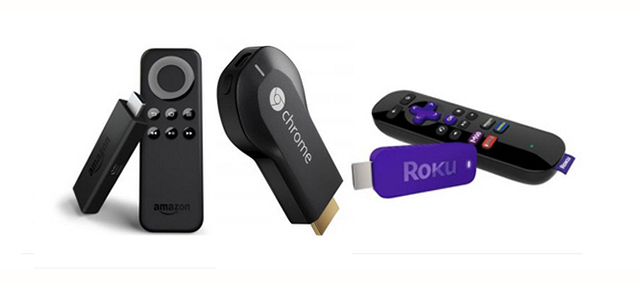
As my colleague Brian Fagioli said yesterday when reporting on the launch of Amazon’s new Fire TV Stick, there’s no shortage of streaming devices available to choose from, and knowing which to go for can be tricky.
If you use Chrome, have an Android phone, and love YouTube, then Chromecast is probably for you. If, on the other hand, you are an Amazon Prime member, then the Fire TV Stick is a good choice, especially as it can currently be had for just $19. The Roku Streaming Stick has over a thousand channels to choose from and loads of options. Still not sure which to go for? Let’s take a look at what they all have to offer.
Price wise there’s little to differentiate them. As I say, if you’re with Amazon Prime and act swiftly, you can pick up a Fire TV Stick for $19. However, it usually retails for $39. Google’s Chromecast can be found for as low as $27, while Roku is the most expensive device at $48. There’s a $20 gap between the Chromecast and Roku’s product, so if you want the best savings, then Google’s stick looks preferable, although for the extra money, Roku includes a remote (as does Amazon Fire TV Stick).
All three devices can output video at 720p and 1080p, and the Chromecast and Roku also offer 1080i. The Amazon Fire TV Stick doesn’t, but does throw voice control into the pot, which is a nice extra.
Amazon and Google’s streaming devices work on computers, smartphones and tablets, while Roku’s offering only works with mobile devices.
Content of course, is a huge factor when choosing which device to go for. The Fire TV Stick gives users the likes of Amazon Instant Video, Crackle, Flixter and Hulu, while Chromecast offers Crackle, Hulu, Netflix and Viki. Roku’s device provides access to Amazon Instant Video, Blockbuster on Demand, Crackle and Flixter. To name just some of the choices. They all offer different news and sports viewing as well.
To help you make the right decision, you can compare the three devices using the below interactive graphic put together by FindTheBest.
What streaming device do you use, and why?
Image Credit: Minerva Studio / Shutterstock
-

Home appliances set to become wireless charging points for phones and other devices
Publié: octobre 27, 2014, 12:59pm CET par Wayne Williams

At the moment, when you want to charge your smartphone or tablet you have to either plug it in, or (if it supports the technology) place it on a wireless charging mat. That's all set to change though, as soon you’ll be able to charge your electrical equipment simply by being near a fridge or washing machine.
It sounds like crazy science fiction, but it’s just very clever science. Energous today announces a partnership with Haier Wireless, the world's largest appliance manufacturer, that will see its WattUp wire-free charging transmitters embedded in a wide range of home appliances including refrigerators, washing machines, dryers, microwaves, stoves and more.
All you need to do to charge any compatible device -- be it a smartphone, tablet, smartwatch or electric toothbrush -- is to get within 15 feet of an appliance and it will start to charge over the air. Make no mistake, this really has the potential to be a game changer -- no longer will we have to think about plugging in devices or placing them on a mat.
"WattUp is a natural fit for a wide range of Smart Home products," says William Xu, CMO of Haier Wireless. "As Haier Wireless continues to cultivate the wireless power industrial ecosystem in the connected home market, true wire-free charging is a value-add we feel we must aggressively pursue. In our vision, WattUp-embedded Haier Wireless appliances would serve as transmitters for any WattUp-enabled device that is within range".
WattUp works by delivering intelligent, scalable power via the same radio bands as a Wi-Fi router. To charge a device (provided it's WattUp enabled) you just need to be close to any of the appliances. Devices can be charged when on a table, in your pocket, or in use, and the technology can charge multiple devices at the same time.
"Expanding into the Smart Home is a central piece of Energous’ roadmap, and WattUp transmitter deployments into Haier Wireless’ everyday products gives us a broad-reaching channel to do so," says Stephen R. Rizzone, CEO of Energous. "This relationship will enable us to create an always-on charging environment in high-traffic areas in homes, offices, retail and commercial spaces".
What do you think of the idea of being able to charge your devices in this way?
-

Fire Phone flops badly, burns Amazon
Publié: octobre 24, 2014, 9:19am CEST par Wayne Williams

Amazon didn’t have a good third quarter, reporting a net loss of $437 million, which is up significantly from the $41m loss it reported for the same quarter last year. Contributing to that loss is the abject failure of the Fire Phone.
My colleague Brian Fagioli described Amazon's handset as Android done differently in his review, and although he liked it, he said it wouldn’t be for everyone. It turns out it’s for hardly anyone.
During the Amazon earnings call, Amazon’s Chief Financial Officer Tom Szkutak said that the company was taking a $170 million dollar write-down "primarily related" to costs associated to the Fire Phone. In other words, Amazon vastly overestimated the phone’s appeal and ordered far too much stock. As Microsoft did with the original Surface.
It’s not surprising to discover that the Fire Phone hasn’t been doing well -- Amazon held a "Fire sale" two months ago when it slashed the price of the device from $199 to just 99 cents (with a two year contract) -- but the scale of its failure is staggering.
Szkutak says as of the end of Q3 Amazon is sitting on $83 million worth of Fire Phone inventory. Ouch.
Photo credit: urfin/Shutterstock
-

B&O PLAY introduces BeoPlay A2, its first Bluetooth speaker
Publié: octobre 23, 2014, 11:26am CEST par Wayne Williams
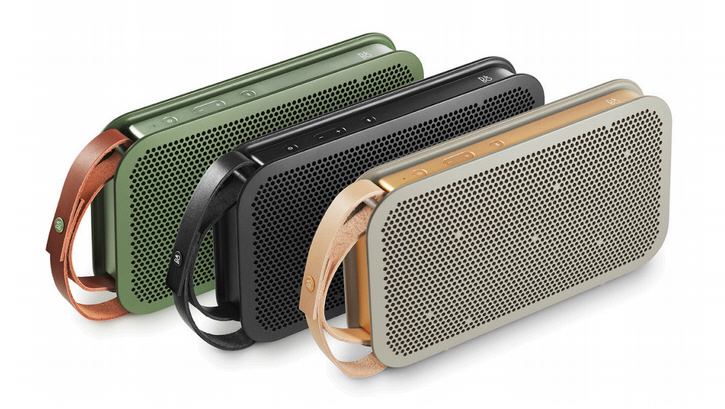
Bluetooth speakers can be a mixed bag, audio-wise. I have a Cambridge Audio speaker which I’m very happy with, but I may be tempted to stray now that B&O PLAY has launched the BeoPlay A2.
The stylish new speaker is designed be carried and has a leather strap/handle on the side. It features Bang & Olufsen Signature Sound and delivers 180W power, with True360 omni-directional performance so the audio should sound good no matter where you are in the room. It has two speaker drivers on each side -- a 3/4-inch tweeter and a 3-inch full range driver.
B&O Play says the rechargeable Li-ion battery allows for 24 hours of music and can be fully recharged in just three hours. The BeoPlay A2 can remember up to eight paired devices and will allow two devices to pair at once.
The speaker measures 256x142x44mm and weighs 1.1Kg. It’s available in black, gray/rose gold and green finishes.
"BeoPlay A2 is an honest product. It is what it looks like: a functional and likable speaker you can easily take with you", says Cecilie Manz, the speaker's designer. "The fact that BeoPlay A2 was designed for a life on the go has influenced every aspect of the speaker in terms of its design. There is no front, there is no back -- and there is no up or down, but there’s sound everywhere".
BeoPlay A2 will be available from 3 November, priced at £299/€349.
-

EHEAR E2: A wearable Bluetooth video camera that won't break the bank [Review]
Publié: octobre 22, 2014, 12:30pm CEST par Wayne Williams

You never know when you’ll see or hear something interesting when out and about. If you want to record what's going on around you, the easiest solution is to whip out your smartphone, but that’s not always practical -- if you’re driving for example, or performing any task that requires both hands (like mountain biking down a treacherous slope).
The EHEAR E2 is a small finger-sized recording device that hooks over your ear, and lets you record what you see. You can fire up the camera with a single tap, and then view your recordings on a phone or tablet later on.
Setting up the device involves firstly turning it on and charging it via microUSB (it takes around four hours to charge fully). You’ll then need to insert a microSD card for recording on to (not supplied), and install the companion Android app by downloading and sideloading an APK file.
Once that’s all done, you’ll need to open the app and pair it to the E2 via Bluetooth. Use the ear loop to attach the device to the side of your head, put the earbud in your ear, and you’re good to go. The device has three buttons and an on/off switch. The buttons let you record video, answer a call on your mobile and share a recorded clip. You can also record directly from the app if you prefer.
When you want to review your recordings, tap on the Video or Audio sections in the app, and tap on the refresh button to get a list of available clips. Select one and tap the download button. Depending on its size, the clip will probably take an age to download, but when it has scroll right to the local storage area, select the downloaded item and hit play to watch the recording. It all sounds rather complicated, and it’s not especially intuitive truth be told, but you soon get the hang of it.
The app shows you the E2’s remaining battery life and free storage, and you can delete recordings from the device via the app, instantly freeing up space.
The quality of recorded video isn’t great. You can choose between 320p at 20fps, and 480p at 15 fps, so it won’t replace your smartphone for recording important events, but for casual use, it’s acceptable. Constantly recording will eat into your battery life -- you can expect around 1.2 hours when recording at 480p.
The E2 weighs just 17g so you can wear it for extended periods, and recording something quickly becomes second nature. The video below will give you an idea of how it works.
The EHEAR E2 is available from GearBest for $65.40 with free shipping, but BetaNews readers can buy it for $54.99 using the coupon code EHEARCN (the code expires November 30).
-

The iPad Air 2 is why tablet sales are falling
Publié: octobre 17, 2014, 4:36pm CEST par Wayne Williams
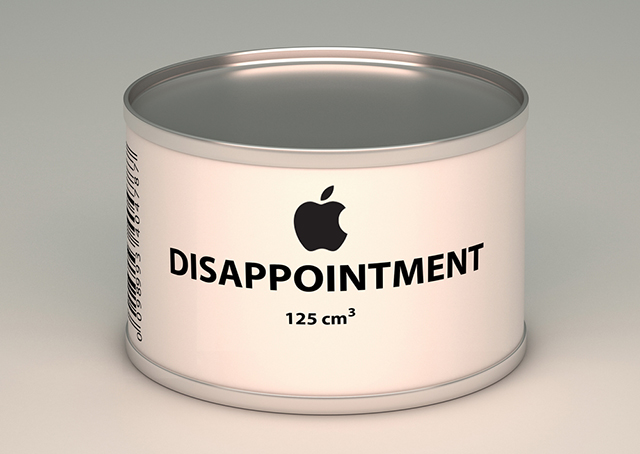
So yesterday Apple announced the latest iteration of its hugely popular iPad. I own a fourth gen model, and as someone who likes to be on the cutting edge, I was all set to snap up the new device. Except, what I saw didn’t excite me or give me a killer reason to drop $600+.
Tablet sales are slowing, and a large chunk of the reason for that can be laid squarely at Apple’s door. While the iPad Air 2 will appeal to first time buyers, businesses, or people looking to upgrade from inferior tablets, it just doesn’t offer enough to get existing iPad owners like me to upgrade. But it’s thinner! It’s lighter! So what? I’m not a frail old lady, or cursed with a muscle wasting disease. My iPad 4 is hardly a major weight, and to be honest, I like my devices to have a bit of heft to them anyway.
The new iPad comes with improved cameras! So what? I will never be the sort of person who takes meaningful photos with a tablet. If I’m somewhere amazingly picturesque, there’s a good chance I’ll have my Canon DSLR with me, and that takes far superior photos. And if I need to take a casual snap of something, my phone’s camera is all I need. People who take photos with an iPad are special. Let’s say no more.
It’s faster! Yes, this is the one selling point that means anything to me. I upgrade my PC on a regular basis in the vague hope that one day I’ll have a system that can keep up with me and do everything I want it to, so a speedier tablet is something that appeals. But the weird thing is, my iPad 4 never feels particularly slow. I’ve never cursed or shouted "come on!" at it. It does misbehave occasionally, forcing a reboot to teach it a lesson, but that’s about it. If I switched to an iPad Air 2 I would notice the difference I’m sure, but my iPad runs all the apps I throw at it without issue, and of course it runs the latest version of iOS, so I have nothing to lose by not upgrading.
It’s available in gold! I shove my iPad in a case, so it could be maroon and I wouldn’t know.
It’s got Touch ID! I like this feature on my iPhone, and I can appreciate it on the iPad, but am I prepared to spend $600+ to get it? Er… no.
So what was I hoping for? What would make me upgrade? Storage. The iPad Air 2 comes in three storage sizes -- 16GB, which is essentially worthless (buy that and you’ll regret it in a week), 64GB, which is the minimum you’ll need, and 128GB, which is the one you really want. If Apple had offered the 128GB model for a lower price, and chucked in a ton of iCloud storage, and just for once added the option to upgrade the internal storage in some way (a proprietary Apple expansion card of sorts would be fine), then I’d have sat up and listened. My iPad is always full, despite regularly copying photos off of it and deleting apps. Storage could have been the iPad Air 2’s killer feature. Not weight or thickness. Who the hell cares about weight or thickness?
A better screen would have been welcome. Sure, the new one is less reflective, but it offers the same 2048 x 1536 pixel resolution found on my iPad 4, the same 264ppi count, and the same Retina display. I can’t complain about my iPad screen, but a better one would be a reason to upgrade.
Any kind of innovation would have helped. Before the launch there was talk of Apple rolling out a giant iPad Air Pro capable of running iOS and OS X. That was never going to materialize, but if it had, at least we’d have something more interesting to talk about, and consider buying.
Adding something different to the iPad Air 2 -- some kind of built-in kickstand, a range of stunning accessories, anything -- would all have given me a reason to upgrade, except we got a refreshed Air and little else.
Don’t get me wrong -- if I was in the market for a new tablet, I would buy the iPad Air 2 in a heartbeat. I own a Nexus 7, and I’ve played around (briefly) with a Surface Pro 3, but neither device can compare with the iPad.
But the trouble is, I’m not in the market for a new tablet and so, like the vast majority of existing iPad owners, I won’t be upgrading to the iPad Air 2.
Maybe the iPad Air 3 will be the device I’ve been waiting for. I guess I’ll meet you back here next year to find out.
Photo credit: shpock/ Shutterstock
-

Apple announces the iPad Air 2 and iPad mini 3 -- thinner and faster
Publié: octobre 16, 2014, 8:29pm CEST par Wayne Williams
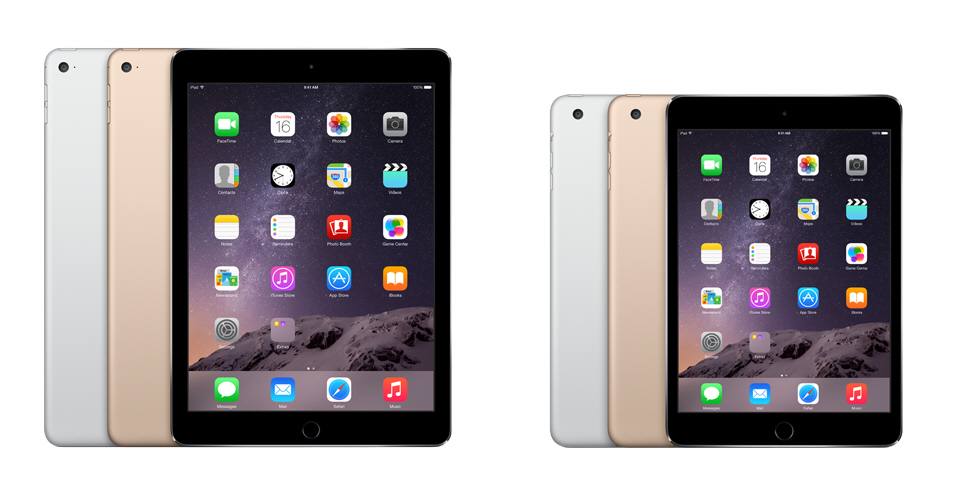
As is the case with all Apple announcements these days, rumors, speculation and leaks were rife ahead of the official iPad event, and pretty much all of what we were expecting to be revealed today, was revealed.
We expected Apple to refresh its iPad Air and iPad mini tablets, and that’s what we got in the shape of the iPad Air 2, and the iPad mini 3.
The iPad Air 2 is very, very thin. Showing it off for the first time Tim Cook joked to the assembled audience, "can you even see it?" The tablet is 6.1 mm thick -- that’s 18 percent slimmer than the previous Air, and less than half the thickness of the original iPad which was released back in 2010. The overall design of the tablet hasn’t changed, but why mess with a winning formula?
The iPad Air 2 is powered by a new A8X processor which offers 40 percent faster CPU speeds and 2.5 times faster GPU than the original iPad Air. It promises faster connectivity as well thanks to the inclusion of 802.11ac Wi-Fi with Multiple-In-Multiple-Out (MIMO) technology.
A new 8MP iSight camera offers 1080p HD video, burst mode photos, and time lapse and slo-mo videos. A new FaceTime camera allows for burst selfies, and single shot HDR and HDR video.

Apple also claims the iPad Air 2 has the lowest reflectivity of any tablet and offers 10 hours of battery life.
It comes with the TouchID fingerprint sensor found on the newer iPhones.
As for pricing, the 16GB model will set you back $499, the 64GB version is $599, and the 128GB model is $699. The WiFi + Cellular model will cost $629 (16GB), $729 (64GB) and $829 (128GB).
Pre-orders start from tomorrow, with shipping by the end of next week.
The new iPad Air 2 is available in silver, space gray and gold -- matching the iPhone.
The smaller iPad’s refresh is less exciting -- the iPad mini 3 is powered by the same A7 chip as last year's model, but now comes with TouchID.
It is priced at $399 for the 16GB version, $499 for 64GB and $599 for 128GB.
Apple is now selling a bewildering array of iPads, with the iPad mini, iPad mini 2 and iPad mini 3 all still available. It has reduced its full-size iPad line up to just the iPad Air and Air 2.
The prices of the older models have all dropped by $100.
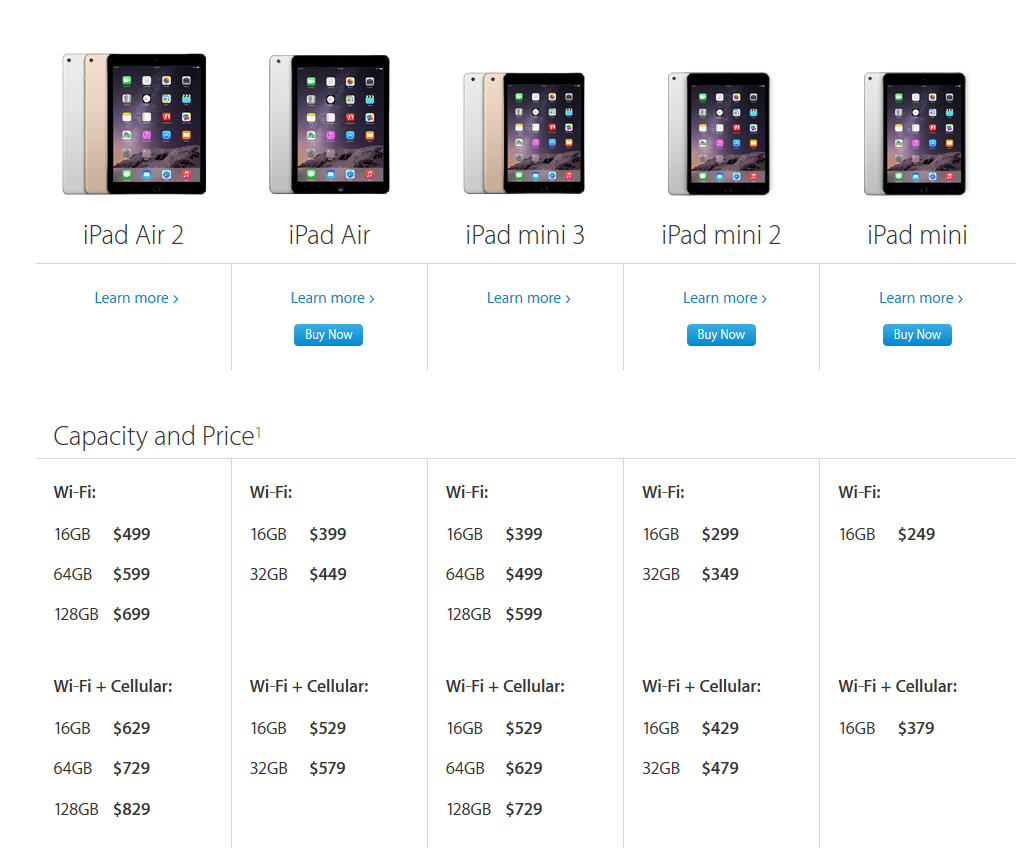
-

Watch the Apple iPad Air 2 and iPad mini 3 launch on a Windows PC
Publié: octobre 16, 2014, 7:01pm CEST par Wayne Williams
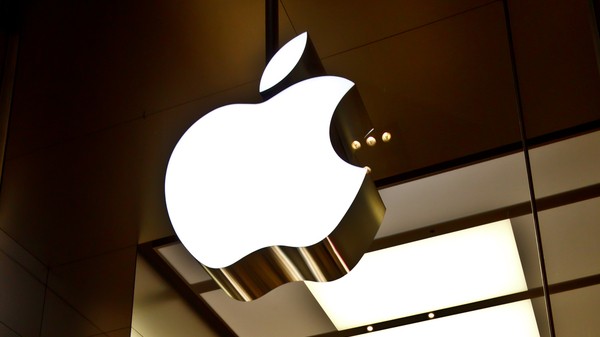
Apple always streams its major events live, but restricts them to existing users of Apple products.
If you want to watch today’s launch of the Apple iPad Air 2 and iPad mini 3, you need to be viewing on Safari 5.1.10 or later on OS X v10.6.8 or later; Safari on iOS 6.0 or later. Streaming via Apple TV requires second or third-generation Apple TV with software version 6.2 or later. However, there is a way around this.
Download and install VLC Media Player, open the program, and click on Media at the top left. Go to Open Network Stream and paste in the network URL of the live Apple event.
This is: http://p.events-delivery.apple.com.edgesuite.net/14pounqefvoiubefvpiub10/m3u8/atv_mvp.m3u8
The event is live now.
Photo Credit: nui7711/Shutterstock
-

1 million people are trying Windows 10 Technical Preview, and a new build is on its way
Publié: octobre 13, 2014, 8:55pm CEST par Wayne Williams

Microsoft released the Windows 10 Technical Preview a fortnight ago, inviting testers to participate in the Windows Insider Program and help the company build a better operating system.
In two weeks, over a million people have apparently signed up to try out the new OS, and according to Microsoft, the tech giant has received over 200,000 pieces of user-initiated feedback to date via the built-in Windows Feedback app. You can see a rough breakdown of the top feedback received so far here. Microsoft also revealed some genuinely interesting information regarding how people are running the OS.
While the obvious way to test the software is in a virtual environment like VirtualBox (see our guide to setting it up here), it transpires this accounts for only 36 percent of installations. 64 percent of users have the Technical Preview running on an actual physical PC, which is good news for Microsoft, because its means those people are likely to spend longer using the operating system.
Equally interesting -- and far more surprising -- is 68 percent of users are launching in excess of seven apps a day. That seems like a lot, but even more shocking is the fact that 25 percent of users are launching more than 26 apps per day, and 5 percent are launching an amazingly specific 68 apps a day.
Microsoft is keen to let users know that it is poring over the feedback it’s receiving, and taking notes. Joe Belfiore, the software giant's Operating Systems Group corporate vice president, describes the process thusly: "What we’re doing is almost like building a plane while flying it with you as our co-engineers. (And yes, that means sometimes the ride will get bumpier!)"
Going forward, it will be Gabriel Aul, head of Microsoft’s Data & Fundamentals Team, who will be providing Windows Insider Program updates (it’s his team which is looking at the feedback and telemetry data Microsoft is receiving) and he’ll be alerting users to new builds via Twitter. It’s worth following him as, according to Belfiore, a new build of the fledgling operating system is "coming soon".
-

Windows 10: How to quickly switch between the Start menu and Start screen
Publié: octobre 13, 2014, 1:07pm CEST par Wayne Williams
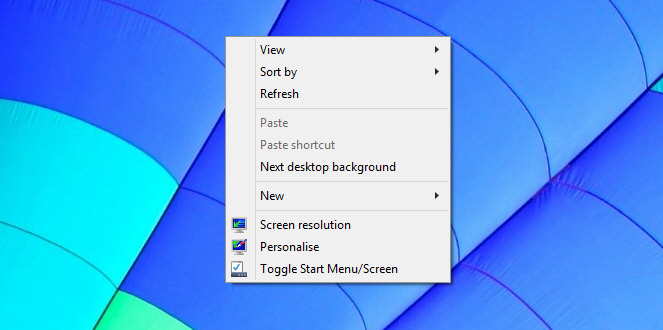
The main highlight in the Windows 10 Technical Preview is unquestionably the new Start menu. It is the perfect blend of the old and the new, mixing the Windows 7 Start menu with Windows 8's tiled Start screen.
If, however, you’re a Windows 8.x user who has become accustomed to working in the Start screen, you may not want to take the 'backward step' of returning to a Start menu. (My colleague Mark Wilson certainly feels your pain). The good news is Windows 10 lets you choose between the Start menu and Start screen, although switching backwards and forwards between the two modes is rather cumbersome. Fortunately, there’s a simple solution.
At the moment, the way to get the Start screen back is by right-clicking the taskbar and selecting Properties, then clicking the Start Menu tab and checking or unchecking "Use the Start menu instead of the Start screen". You then need to log out and log back in again to make the changes.
That is, obviously, a far from ideal situation, but thankfully a TenForums user has created a script which adds a Toggle Start Menu/Screen option to the desktop context menu. The process of installing it very simple, just grab the file from here, and unzip it. Move the Toggle_Start_Menu_or_Start_Screen.vbs file into C:\Windows then double-click the Add_Toggle_Start_Menu_or_Start_Screen_to_Context_Menu.reg file and approve the changes to the Windows registry.
Once installed, all you have to do is right-click the desktop and select the option to switch between the Start menu and Start screen. The beauty of this solution is you don’t need to log out and log back in to make the change, it just works.
There is another script available if you want to remove the toggle.
It’s a simple, and elegant solution and hopefully Microsoft will implement something similar in the finished Windows 10 release.
-

Imgur reinvents the GIF with Project GIFV
Publié: octobre 9, 2014, 3:03pm CEST par Wayne Williams

The GIF was first introduced to the world by CompuServe in 1987 and despite all of the technological advancements that have occurred since then -- including the creation of the web itself -- the ancient graphics format remains as popular today as ever.
With Project GIFV, Imgur has taken what’s great about animated GIFs, but modernized the format. The platform-wide upgrade will automatically convert uploaded GIF files into MP4 video on-the-fly. The resulting .gifv will offer better quality in a smaller file size and load much faster. But that's not all.
As a result of this upgrade, users will be able to upload much larger animated files to the image site. Imgur currently limits GIFs to 5MB in size, but will shortly begin accepting ones up 50MB. You can see what the difference will be like by comparing this 5MB GIF with this 50MB GIFV.
Imgur says the new format will work everywhere and fully animate on sites like Facebook and Twitter. That image above is a JPG because WordPress doesn't currently accept the new format for security reasons, but that should change in time. Imgur plans to submit a specification to the relevant standards organizations before the close of the year.
"It’s a little known fact, but the GIF format was never intended for animation in the first place," says Tim Hwang, Head of Special Initiatives, Imgur. "With Project GIFV, Imgur is reimagining the looping GIF video with all the richness it deserves as a key piece of internet culture".
-

Atongm Bluetooth Virtual Laser Keyboard: Lets you type on any flat surface [Review]
Publié: octobre 7, 2014, 1:29pm CEST par Wayne Williams
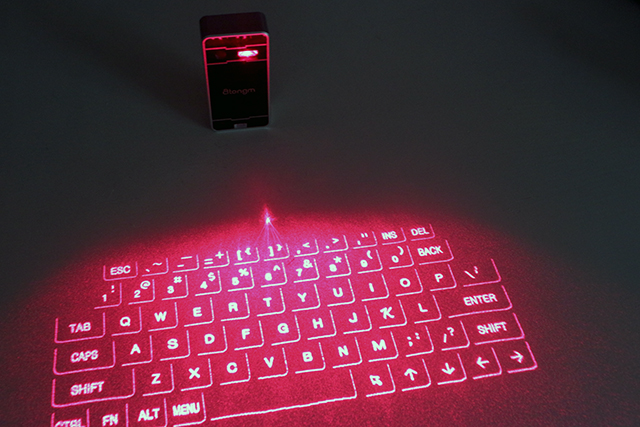
Tablets are fantastic for casual tasks such as checking email, browsing the web, watching movies and playing games, but they’re not so good for doing work on because the virtual keyboard takes up so much of the screen space, and it’s difficult to touch type on.
If you want to boost your productivity, you need to consider buying a keyboard for your device. There are plenty of good ones to choose from, but that adds yet another thing to carry around with you. The Atongm Bluetooth Virtual Laser Keyboard is a tiny solution (36x18x74 mm, approx. 40g) which gives you back your screen space and turns any surface -- such as a table in a coffee shop -- into a keyboard.
Place the device on a flat surface, flick the switch on the back to On and it projects the red outline of the keyboard in front of it -- at a distance of around 10cm away. The keyboard is the same width as an iPad, at 24.1cm wide. When you’re not typing anything the brightness of the outline reduces to save battery life.
Next connect it to your tablet, phone or computer. It’s compatible with Windows (XP and up), Mac OS X, iPhone and iPad, Android 3.1 and up, and Windows Phone 7/8, and connects to devices via either USB (cable supplied) or Bluetooth. When pairing it via Bluetooth, you need to press and hold FN+B on the projected keyboard to make it discoverable.
So what’s it like typing on a table? Well it certainly does take some getting used to, but actually it’s not bad. Even though the laser keyboard claims to detect up to 400 characters per minute, you probably won’t type as many words using it as you would on a regular keyboard, but it accurately identifies all the key presses you make. The mistakes that appeared in documents were mine, not the keyboard’s.
So you can be certain your taps are being registered, the device beeps at you as you type. This is helpful to begin with, but after a while gets on your nerves (or it did in my case anyway). Fortunately you can turn the audio feedback off or on again by pressing FN+P. Pressing FN+left or right adjusts the volume.
There is of course an obvious problem with a laser keyboard like this. If you’re in a dark(ish) room, you can see the keyboard perfectly without problems (it offers contrast up to 1800 lux), but if you’re outside in bright sunlight the projection from the red laser diode is pretty much invisible. Pressing FN+up or down will adjust the brightness to suit your environment.
There is the danger something like this could be viewed as a gimmick, rather than a proper keyboard, but once you get used to it, it’s actually a very good compromise.
The Atongm Bluetooth Virtual Laser Keyboard costs $67.11 (with free shipping) from GearBest.
-

Apple Watch not cool enough? How about a Samsung Gear Live running Windows 95?
Publié: octobre 6, 2014, 9:31am CEST par Wayne Williams
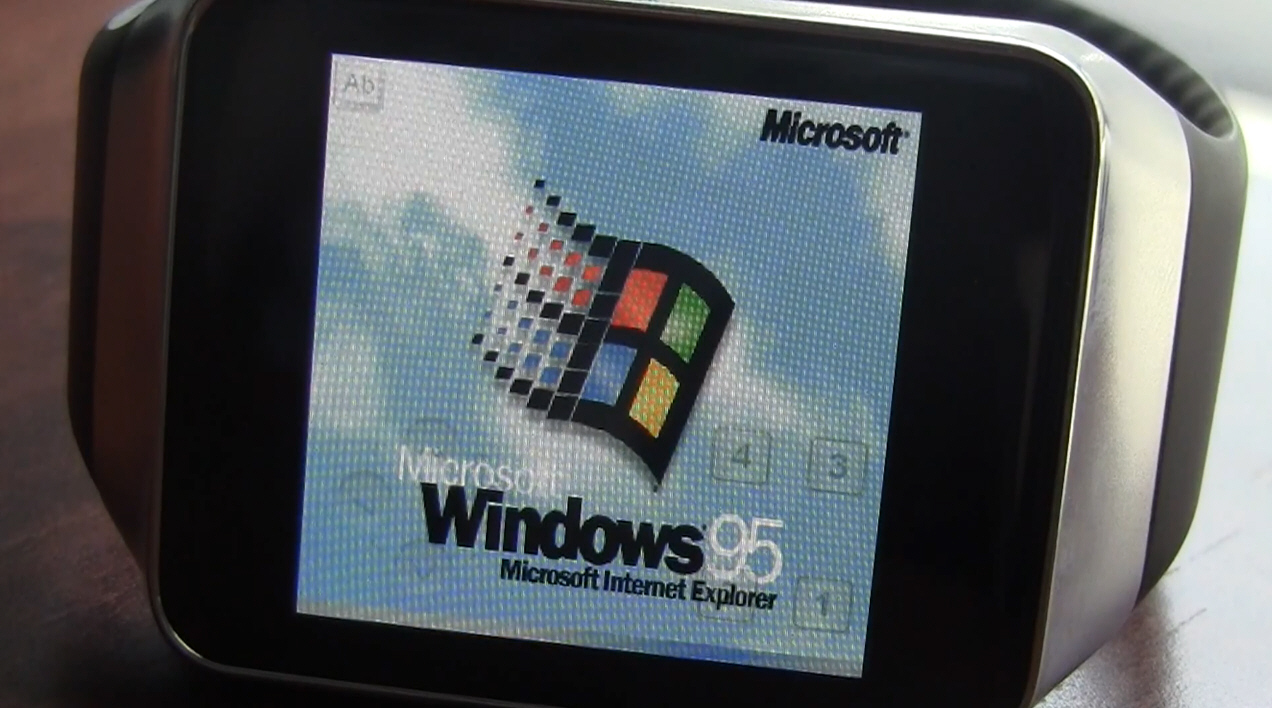
Apple Watch could well be the device that brings wearables into the mainstream, but if you’re not a fan of Apple products, there are plenty of Android smartwatches to choose from, and if you want to really stand out from the crowd, how about a watch that runs Windows 95?
Microsoft’s veteran operating system will turn twenty next year, and enterprising Samsung Gear Live owner Corbin Davenport has managed to blend old and new, getting Windows 95 running on Android Wear.
In a new video posted on YouTube, Davenport shows off the OS running under aDosBox. He chose that because "faster emulators, like DosBox Turbo, don’t seem to work properly on Android Wear".
Although you would expect using the Start menu to be rather fiddly on the Gear Live’s small screen, it proves not to be too bad, although no doubt Davenport has had some practice.
While it’s undeniably cool (in a geeky way), the Windows 95 smartwatch is sadly not very practical as the OS is very slow and runs out of RAM after opening applications. It’s not possible to add more RAM either, because "this port of DosBox doesn’t have an accessible config file".
Although it’s more a proof of concept at the moment, rather than a practical product, there’s no doubt it could be made much better in future -- maybe in time for that 20th anniversary.
Would you wear a watch running Windows 95?
-

How to use virtual desktops in Windows 10
Publié: octobre 3, 2014, 9:27am CEST par Wayne Williams
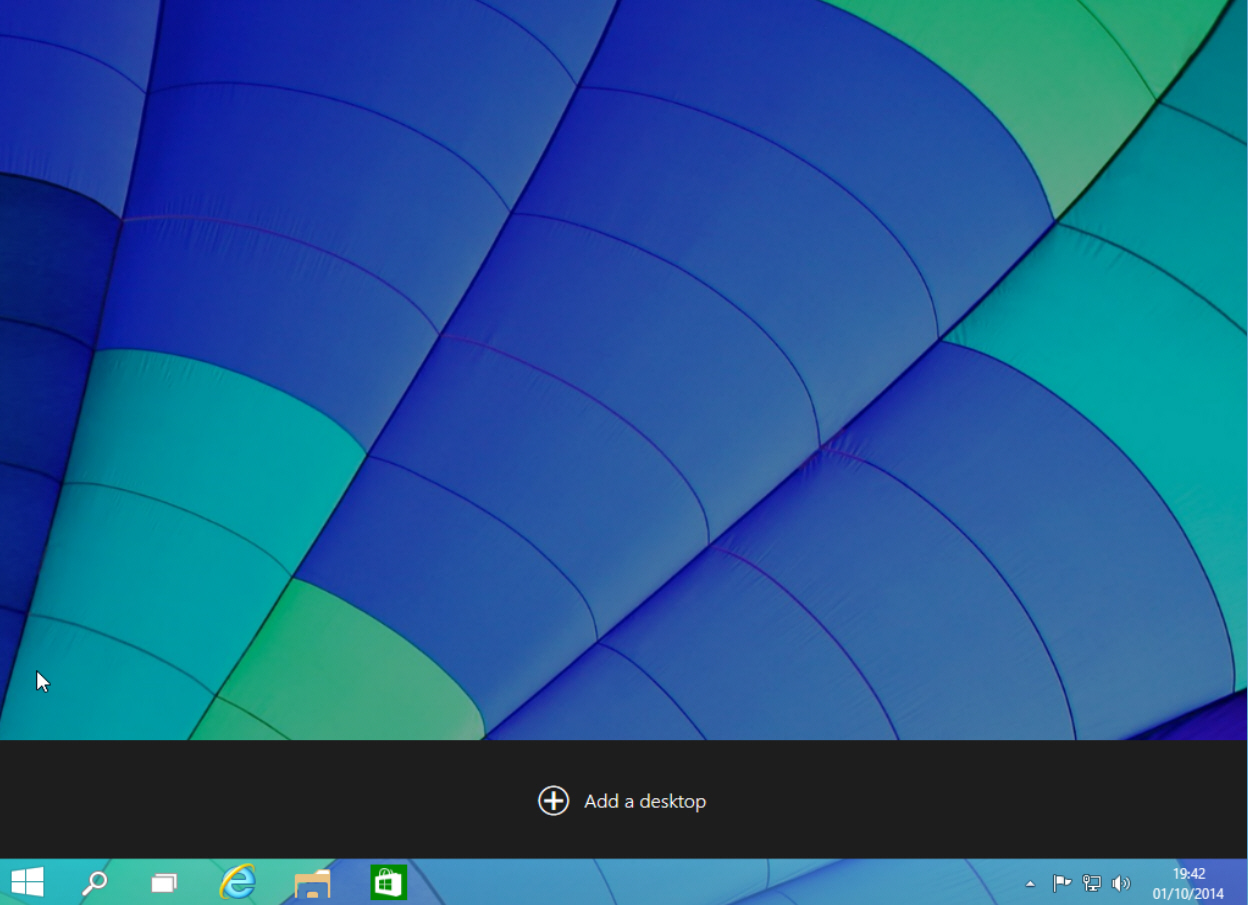
While most people will be talking about the return of the Start menu in the next version of Microsoft’s operating system -- and with good reason -- it’s not the only big change in Windows 10.
Windows 8 proved to be something of a productivity killer for many people, but Microsoft is once again catering to the needs of power users, and has finally introduced a feature that has been offered in Linux for many years -- the virtual desktop.
Unless you have a multi-monitor setup it can be easy to run out of screen space. For that reason, Windows 10 provides multiple desktops that you can work in and quickly switch between.
To use this feature, just click the new Task View button on the taskbar. This is located between search and Internet Explorer.
To add a new desktop, all you need to do is click the Plus sign. You create multiple desktops, and switching between them is just a matter of clicking the Task View button again and moving your mouse over the thumbnail of the one you want. Once the workspace is displayed above, click on it (or click the Task View button again) to start using it.
You can also switch between desktops by pressing Ctrl+Win and tapping the left or right keys.
Moving open apps and windows between desktops is very straightforward. Right-click the window to move (in the desktop switcher screen), select "Move to", and then choose the desktop you want.
To close a virtual desktop, hover your mouse over its thumbnail and click on the X that appears.
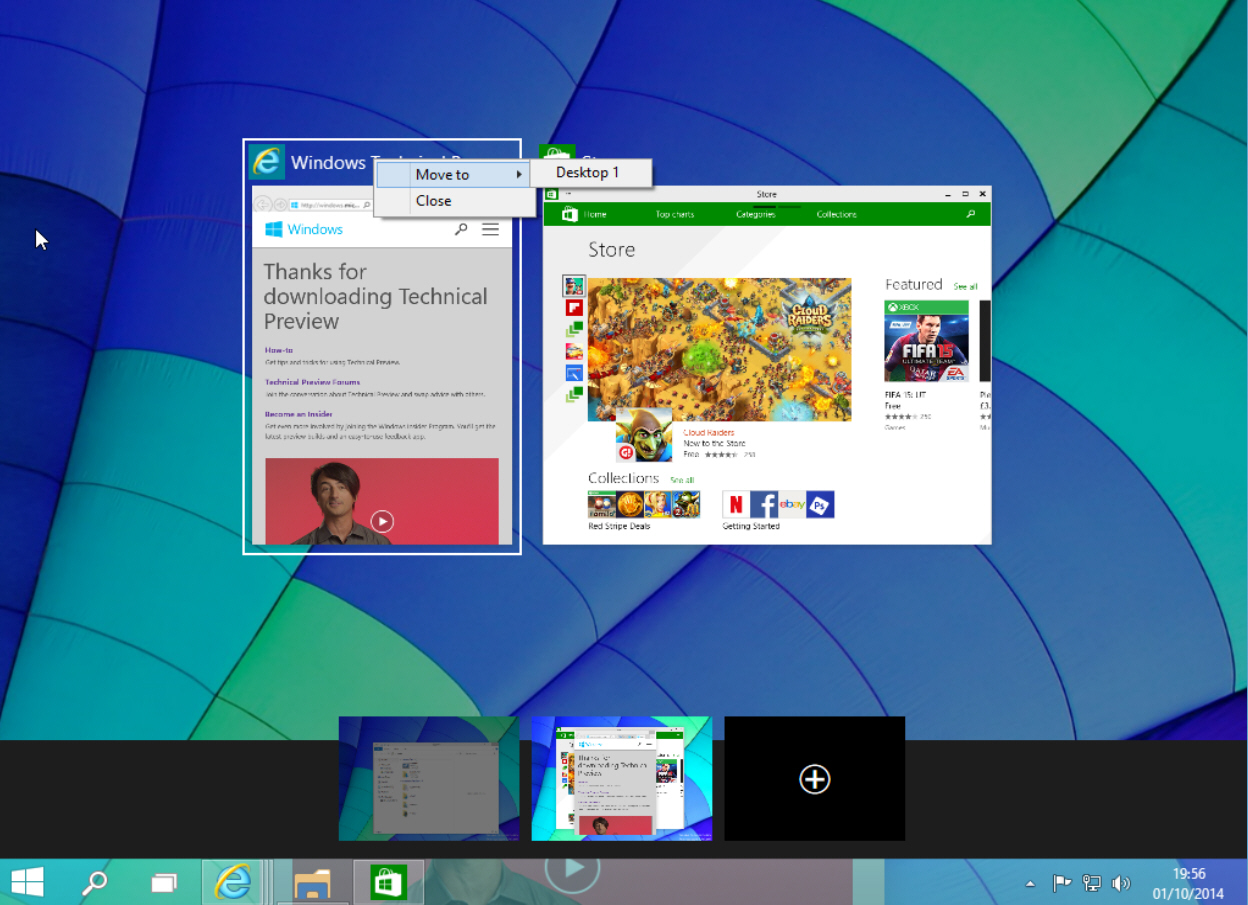
-

Gigaset QV830: A super-affordable 8-inch Android tablet [Review]
Publié: octobre 2, 2014, 2:43pm CEST par Wayne Williams
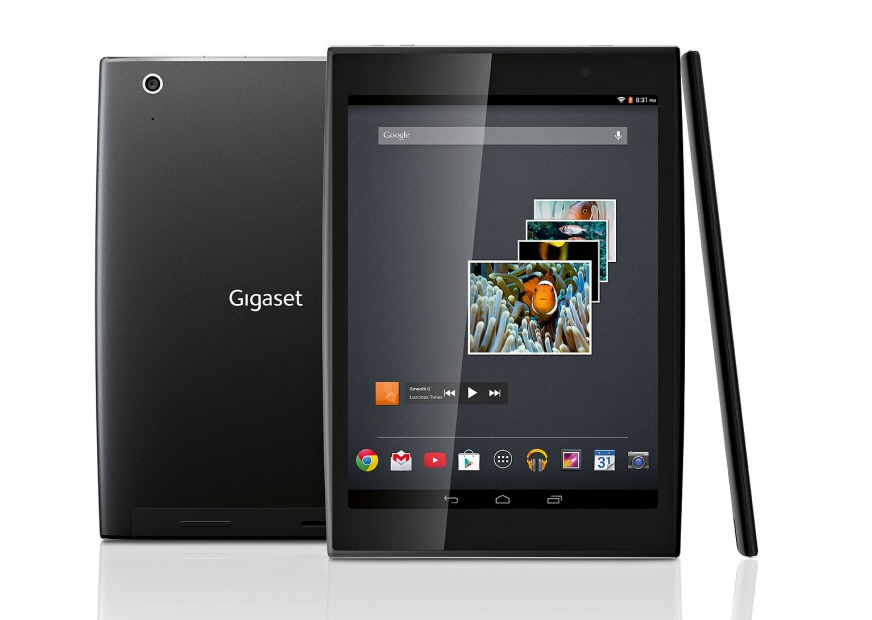
There are lots of excellent Android tablets around, including the Nexus 7, and the Kindle Fire HDX, but if you can’t afford a top of the range tablet, or are looking for a second device, or one to give as gift, then a budget model may be preferable.
Gigaset (previously Gigaset Siemens), which usually makes home phones, has entered the tablet market with the QV830, an ultra-affordable 8-inch Android tablet with some stylish touches -- it has an anodized aluminum rear casing, for example, rather than being all-plastic as you might expect.
The top and bottom of the device (when viewed in portrait mode) are shiny metal, and the sides are plastic. It looks good. As with other cheaper tablets the controls and ports are at the top end. From left to right they are volume, microUSB 2.0, headphone jack, micro SDHC and on/off.
The Gigaset QV830 is 141 x 200 x 8mm and weighs 351g (the similarly sized iPad mini, by comparison, weighs 331g). You can hold it one-handed, but it’s more comfortable in two.
This is a budget tablet -- it’s currently on sale for just £69.99 -- so you shouldn’t expect too much from the specs, but they’re very reasonable.
It’s powered by a 1.2 GHz Quad Core, Mediatek MT8125, Cortex A7 processor, with 1 GB RAM and 8 GB of storage. The micro SDHC lets you expand storage to up to 32GB. It has a 5 MP auto focus rear camera (with no flash), and a 1.2 MP 720p front shooter. The 3260 mAh battery should deliver up to 8 hours of normal life -- not amazing, but passable -- and promises a standby time of 240 hours. It runs stock Android 4.2.2 Jelly Bean.
The 8-inch screen is reasonable, although it only offers a resolution of 1024 x 768 (half that of the iPad mini), and a pixel density of just 160ppi so it appears quite grainy. The color and contrast are nicely balanced however. The screen is very shiny -- it’s like looking into a mirror -- which makes using it in bright light difficult.
Initial impressions weren’t, in truth, all that favorable. When I turned it on I was greeted with a message telling me a Google app had crashed, and during set up the Google Account Manager also crashed, forcing me to restart from the beginning. I then had to update the touch panel firmware before I could start using the device. The volume was cranked up to the maximum by default and actually made me jump the first time it sounded an alert to let me know a new mail had arrived.
In use though, the tablet was fine. The cameras take decent photos, nothing amazing, and with rather too much noise, but for a quick snap or video chat they are passable. The rear camera has auto-focus rather than fixed focus, so you can take close up shots, and you get HDR and panoramic modes too.
Performance wise the tablet delivered about what I was expecting. Games played well enough, although this is not the tablet you want to use to show off the latest 3D blockbusters, and movies are perfectly watchable.
I found the screen wasn’t all that responsive at times, which was a bit annoying, but making more deliberate swipes and taps solved the problem.
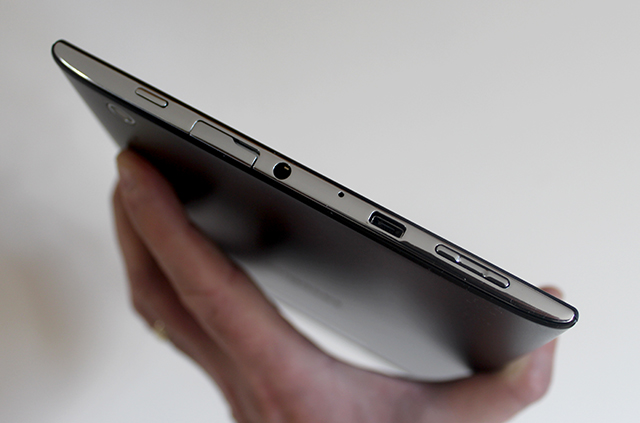
So the Gigaset QV830 isn’t perfect -- it’s not an iPad mini or Kindle Fire HDX rival -- but that doesn’t matter. Gigaset isn’t trying to compete with those. The QV830 is a £70 tablet -- £70! -- and to pull it up for not offering the same quality or performance as far more expensive alternatives would be unfair. For a budget device, it’s great. It’s much, much better than most other low end tablets, and as a starter device, or a second tablet for your kids, it’s hard to beat. The fact it offers an 8-inch screen for that price is a definite plus, and I've found myself using it more than my Nexus 7 recently.
The tablet is currently on sale on the Curry’s website, priced at £69.99, although the offer is only set to run until the 16 October (after which time the price will go up to £99.99) so if you want to snap up an absolute bargain, act fast.
-

Thinking of buying a secondhand iPhone? Check if it’s been stolen first
Publié: octobre 2, 2014, 12:06pm CEST par Wayne Williams

Apple devices hold their value well, which is good news if you’re thinking of selling an old one. The downside of this is it makes iPhones an attractive target for thieves.
If you’re looking to buy an iPhone, but can’t afford a brand new one -- on contract or off -- then shopping for a used model makes a lot of sense. But how can you know for sure that the device you’ve got your eye on is being offered by the legitimate owner, and not a thief offloading his ill-gotten gains? A new Apple tool can tell you.
The new tool lets you check the activation lock status of the device in question. Just enter the iPhone IMEI or serial number (which are to be found in Settings > General > About) and the page will tell you if that phone has been remotely locked by its real owner.
If the phone is unlocked, you’ll be able to set it up and use it without issue.
There is one glaring problem with this approach of course -- it relies on the seller giving you the IMEI or serial number and there’s no way of knowing (if you’re buying online), whether the details they provide relate to the actual phone in question.
Still, it adds one more barrier for thieves to overcome, which is clearly a good thing.
-

Thinking of buying a secondhand iPhone? Check if it's been stolen first
Publié: octobre 2, 2014, 12:06pm CEST par Wayne Williams

Apple devices hold their value well, which is good news if you’re thinking of selling an old one. The downside of this is it makes iPhones an attractive target for thieves.
If you’re looking to buy an iPhone, but can’t afford a brand new one -- on contract or off -- then shopping for a used model makes a lot of sense. But how can you know for sure that the device you’ve got your eye on is being offered by the legitimate owner, and not a thief offloading his ill-gotten gains? A new Apple tool can tell you.
The new tool lets you check the activation lock status of the device in question. Just enter the iPhone IMEI or serial number (which are to be found in Settings > General > About) and the page will tell you if that phone has been remotely locked by its real owner.
If the phone is unlocked, you’ll be able to set it up and use it without issue.
There is one glaring problem with this approach of course -- it relies on the seller giving you the IMEI or serial number and there’s no way of knowing (if you’re buying online), whether the details they provide relate to the actual phone in question.
Still, it adds one more barrier for thieves to overcome, which is clearly a good thing.
-

Everything you need to know about the Windows 10 Start menu
Publié: octobre 1, 2014, 8:28pm CEST par Wayne Williams
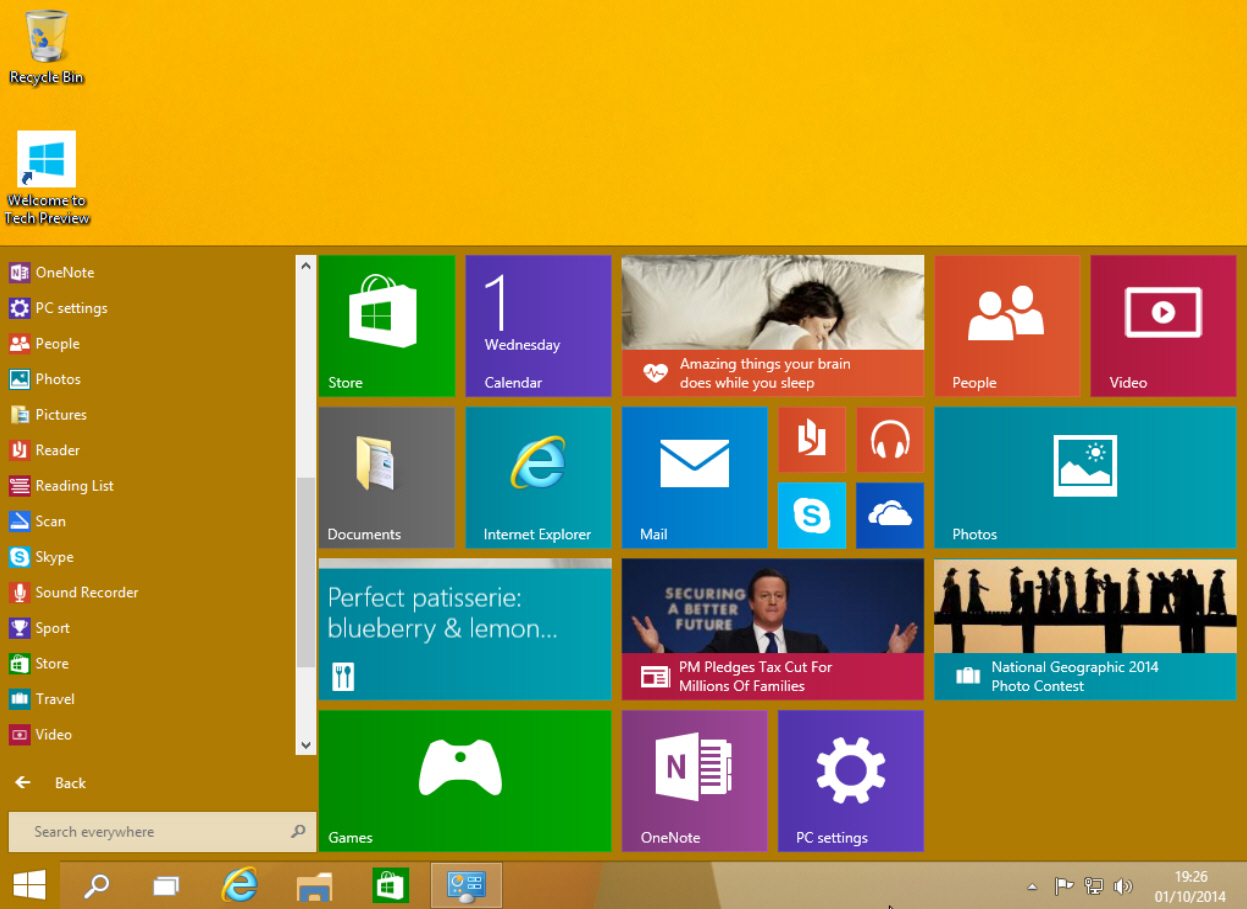
I switched from Windows 7 to Windows 8 from day one, and although I’ve dabbled with Start buttons, Classic Shell being the preferred choice, I learned to live with the Start screen, something that became easier once Microsoft released Windows 8.1 and 8.1 Update. But now that Windows 10 Technical Preview is here, it’s time to once again embrace the Start menu.
Windows 10’s Start menu is the perfect blend of Windows 7 and Windows 8.x. Click the Start button and the menu appears, displaying icons on the left and tiles on the right.
The top of the Start menu shows your user name and clicking on it will let you change your account picture, lock the computer or sign out. The power button to the right lets you put your PC to sleep, shut it down, or restart.
Underneath that are icons for Documents, Pictures, PC Settings, and File Explorer. Icons for your programs appear below those, and by default you see Snipping Tool, Calculator, Sticky Notes, Paint and Games.
Click on All Apps and you can access the bundled windows apps and any you've installed. The calculator app still fills the screen, but at least it now runs windowed and can be resized. Scroll to the bottom of All Apps and there are folders for Windows Accessories, Windows Ease of Access, and Windows System.
Right-click on an app and you can open it, uninstall it, pin to Start or pin to taskbar.
The Search box at the bottom of the menu lets you search your PC and the web.
The tiles on the right side of the Start menu look and work the same as the tiles on the Windows 8.1 Start screen. You can launch an app, or if you right-click its tile you’ll be able to unpin it from Start, pin it to the taskbar, uninstall it, or resize it. There are small, medium, wide and large sizes available (although not all sizes are available for all tiles). Live tiles can be turned on or off.
In the top right corner of the tiled section is a Windows Feedback app you can use to send feedback regarding the new OS to Microsoft.
The tiled area on the right expands or contracts as you add or remove tiles. So if you like apps, it will spread right across the desktop. If you hate having tiles, just unpin every one and it will change to a standard Start menu. To get the tiled section back, just pin any app to Start.
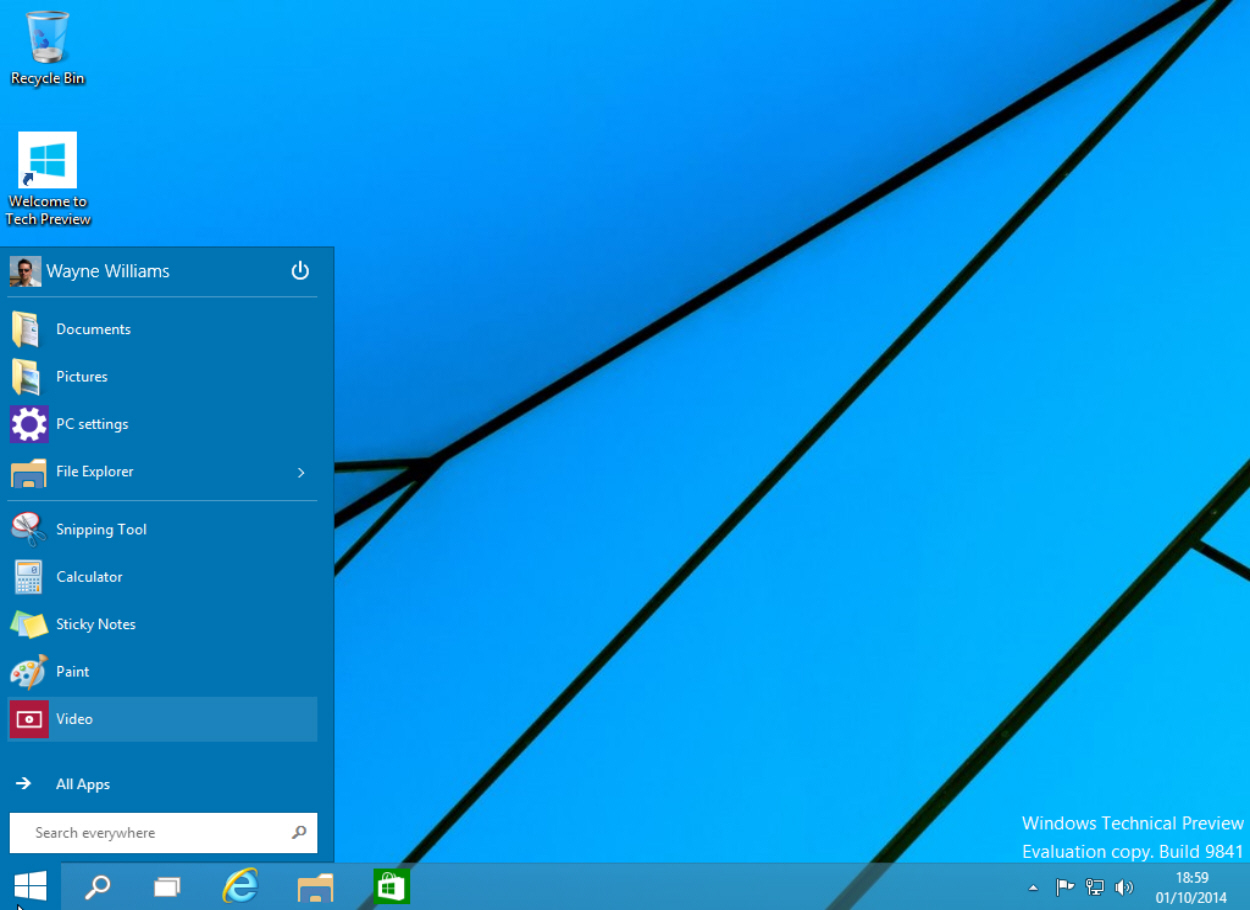
You can resize the menu by clicking and dragging on the top edge. Want a long, squat Start menu? No problem!

Right-click on a blank area of the tiled section and you can Personalize the menu or access Properties. The Personalize option lets you change the color of the taskbar, window borders and Start menu. The default choice is Automatic -- Windows will choose whatever goes best with your current setup.
Click Properties and the Taskbar and Start Menu Properties window will open. Click the Start Menu tab and you can turn the menu off and go back to working with a Start screen. You can also manage your privacy and fully customize the menu. This last option will let you choose how links, icons and menus look and behave. You can also choose which items to pin to the Start list here. Should you want to revert to the original selection, click the Use Default Settings button.

Right-clicking the Start button will bring up the same context menu found in Windows 8.1, with some minor changes.
It’s all very intuitive, and Microsoft has done a great job of blending both worlds. Having got used to the Start screen in Windows 8.x I wasn’t sure I wanted to go back to a Start menu, but having spent just a short while with the one in Windows 10 I’m ready to make that change.
-

How to install Windows 10 Technical Preview on Oracle VirtualBox
Publié: octobre 1, 2014, 7:02pm CEST par Wayne Williams
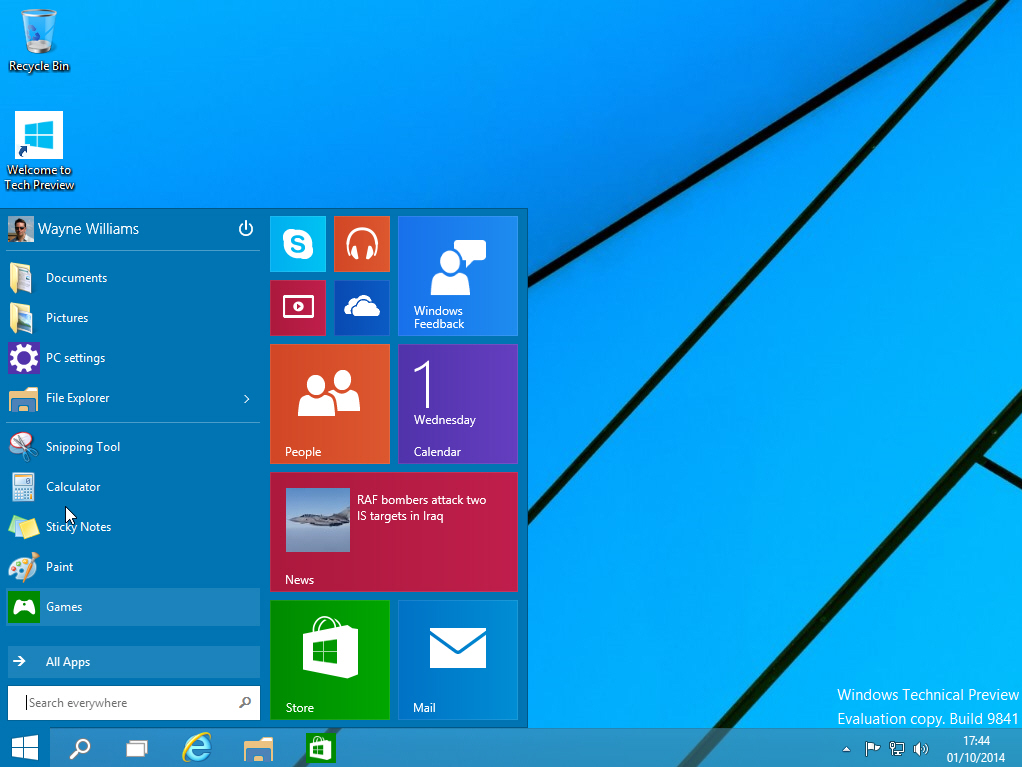
Microsoft has just released the Technical Preview of Windows 10. It’s a very early build, so you wouldn’t be advised to run it as your main operating system, and while you could set it to dual boot, running it in a virtualized environment is probably a better idea.
The process is very simple -- all you need is a copy of Oracle VM VirtualBox and the Windows 10 Technical Preview ISO.
To set up Windows 10 in VirtualBox, launch the software and click New in the Manager window. In the Create Virtual Machine dialog box enter "Windows 10" as the name of the operating system. Select the Windows 8.1 as the version. (Choose Windows 8.1 (64bit) if you have a 64-bit ISO) Hit Next.
Set the Memory Size. The recommended figure should be fine. On the following screen choose to "Create a virtual hard drive now" and click Create. Accept VDI (VirtualBox Disk Image) as the hard drive file type. You’ll be asked if you want the new virtual hard drive to be dynamically altered (it will resize as required) or a fixed size. The latter option is faster, so select that.
Click Create and VirtualBox will begin building the drive.
When done, click the Start button in the Manager. In the "Select start-up disk" window, click the folder icon and navigate to the Windows 10 ISO.
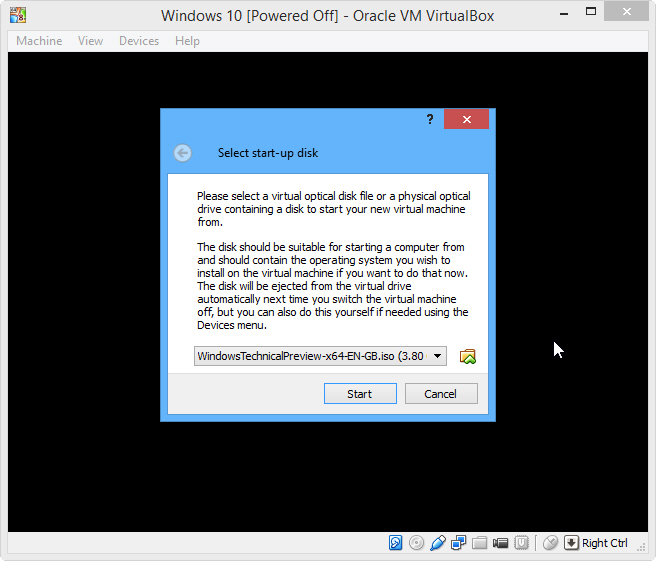
Click Start and Windows 10 should begin to load. Select your language settings, then click the "Install now" button. Accept the license terms. Choose the "Custom: Install Windows only (advanced)" option.
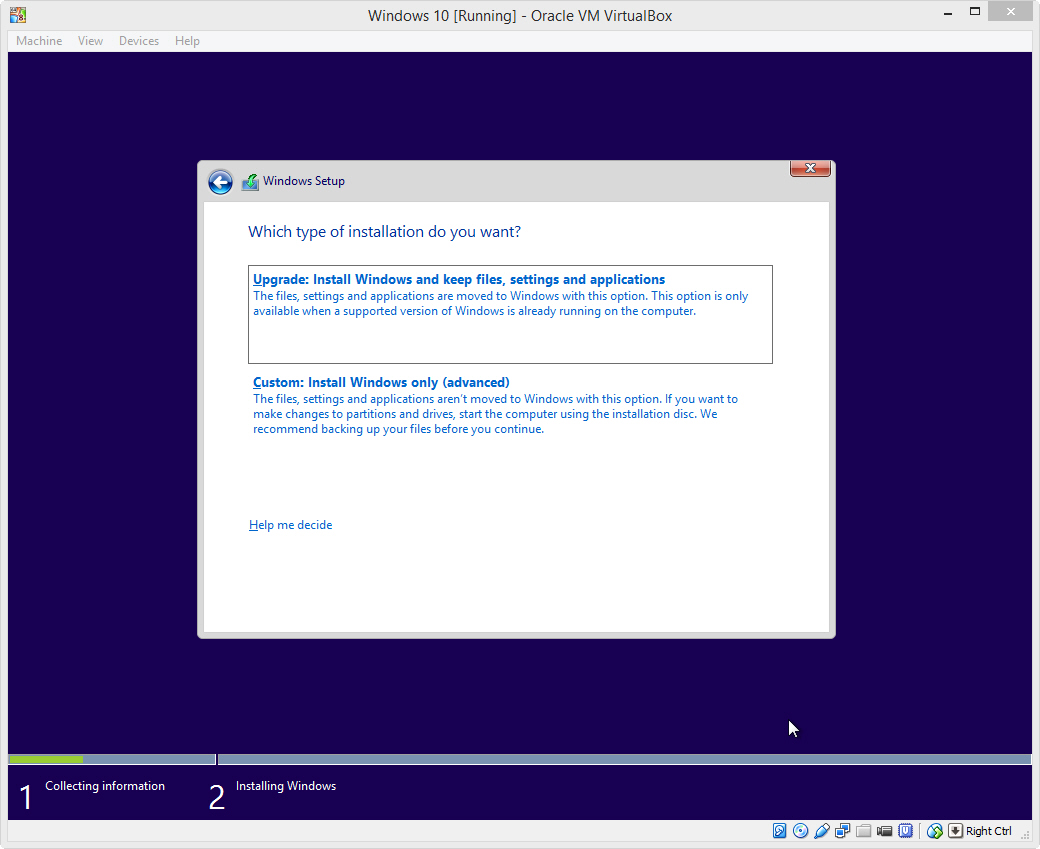
Click Next, and the installation process will begin, rebooting as necessary.
When it’s done, you’ll be given the option of using express settings, or customizing things. It’s easiest to select the first one. Sign in with your Microsoft account (entering a code as required), and then finalize everything else.
It will start at the desktop, and one of the first things you’ll see is a Welcome to Tech Preview icon. Click this and an Internet Explorer window will open with tips and tricks, access to the technical preview forums and more.
If you want to resize the OS window, click View in VirtualBox and select Fullscreen or Scaled Mode.
The simplest way to shut down Windows 10 when you no longer need it is to click the X in top right corner of VirtualBox and select "Power off the machine".
Troubleshooting
If VirtualBox encounters errors and fails to install Windows 10, the first thing to do is make sure you’re running the very latest version of the virtualization software. I wasn’t and that was the source of my problem.
If that doesn’t fix the issue, go to System Properties on the host (not the virtual) PC, click the Advanced tab and click Settings under Performance. Select the Data Execution Prevention tab and change the setting from "Turn on DEP for essential Windows programs and services only" to "Turn on DEP for all programs and services except those I select".
OK that, restart your system and this time Windows 10 should install just fine in VirtualBox.
-

Windows 10 Technical Preview is live -- download it now
Publié: octobre 1, 2014, 6:07pm CEST par Wayne Williams
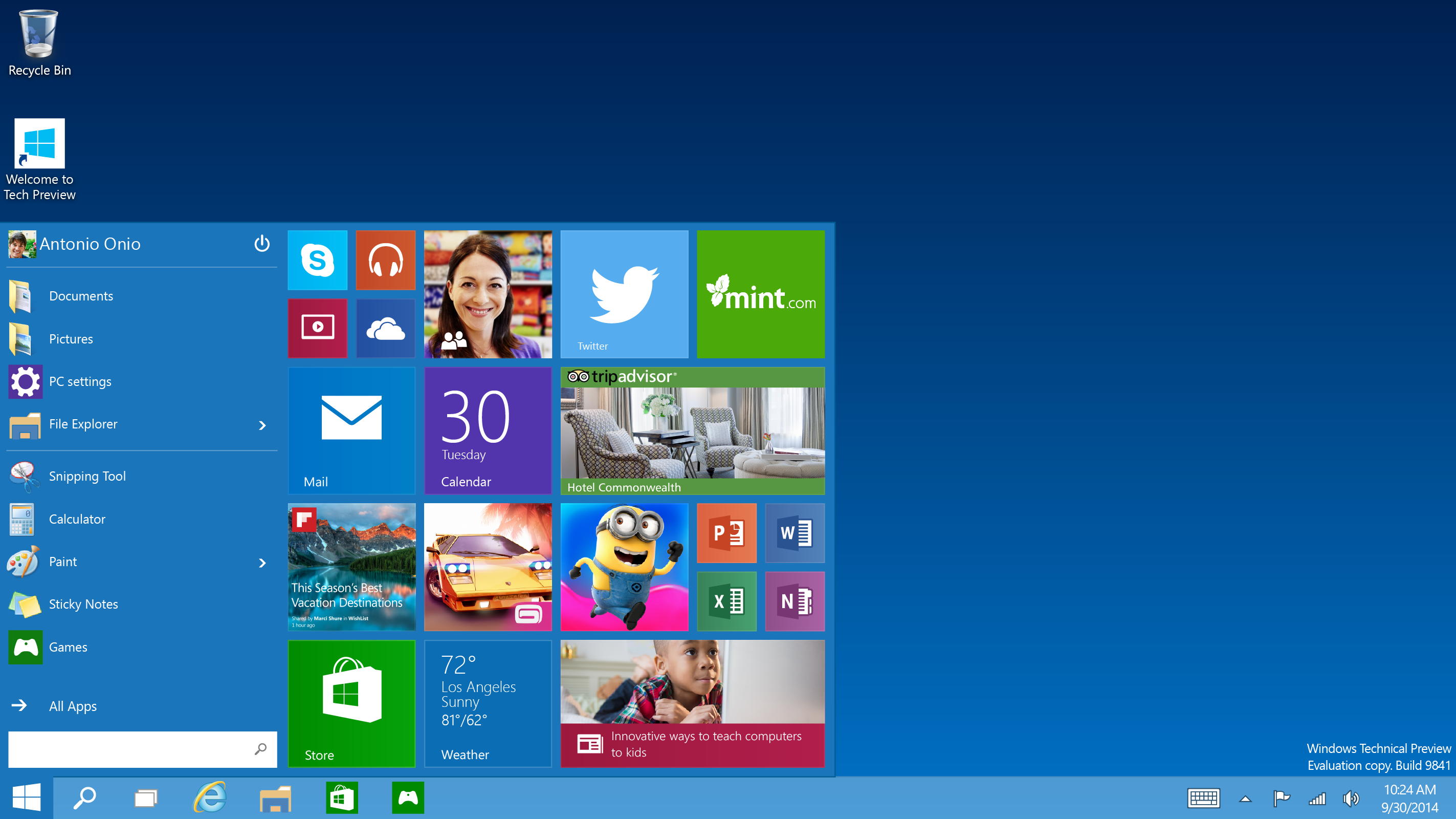
Microsoft surprised everyone yesterday by announcing that the next version of Windows would not be Windows 9, as was widely expected, but Windows 10. The new name makes little sense really, but that doesn't matter because the new operating system looks good, and should please current users of both Windows 7 and 8.x.
Before it launched Windows 8, Microsoft released preview versions of the OS, allowing people to test what was a radically different UI. With Windows 9, the tech giant is taking the same approach, but with one fundamental difference -- it promises to listen to what users think of the OS, and this feedback will help shape the direction of Windows 10. If the company had done that with Windows 8 there's a very good chance things might have worked out differently for the tiled OS. If you're keen to get your hands on the technical preview, the good news is the wait is over and it's now available.
To try out the OS for yourself, just head to http://preview.windows.com and click the Get started button. You'll then be invited to join the Windows Insider Program. This is the only way to try the technical preview, so click on Join now. Sign in to your Microsoft account and accept the terms of use. You'll see a congratulations message. Click the download link and then download the version of the OS you require.
The English 32-bit (x86) version is 3.16GB, the English 64-bit (x64) is 4.10GB. There are are versions for the United Kingdom, and Chinese and Portuguese editions available.
Once your download is complete, burn the ISO file to a DVD or transfer it to a USB flash drive and run the setup.exe. The Product key you require is on the download page.
-

Windows 8.x goes back into reverse gear, losing the most usage share yet
Publié: octobre 1, 2014, 10:02am CEST par Wayne Williams
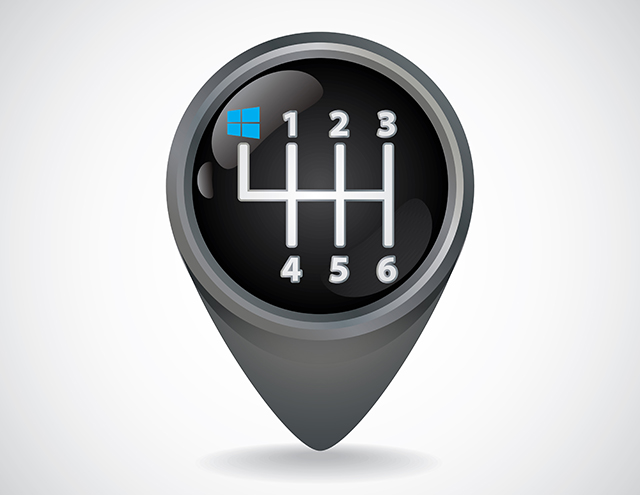
Windows 10 really can’t come soon enough for Microsoft as its predecessor is continuing to tank. In August the tiled OS actually gained usage share -- according to web analytics firm NetMarketShare -- which was unusual as 8.x had lost users in the previous two months. But any suggestions of a recovery are swiftly crushed looking at September’s figures.
Both Windows 8 and 8.x lost a load of usage share last month, while Windows 7 reached an all-time high. It’s Windows 7 users Microsoft really needs to be aiming for with Windows 10 (and if it can tempt XP users too, so much the better).
In August, Windows 8 managed a 6.28 percent share of the desktop operating system market, but lost 0.69 percent in September. Windows 8.1, an OS which really should be growing, went from an all-time high of 7.09 percent to 6.67 percent, a drop of 0.42 percent. In total, Windows 8.x lost 1.11 percent share.
Windows 7 on the other hand went from 51.21 percent in August to 52.71 percent in September, a gain of 1.5 percent. That’s its highest point ever.
Windows XP, which should be losing share, dropped just 0.02 percent, going from 23.89 percent to 23.87 percent.
So September was another dreadful month for Windows 8.x. It’s no wonder Microsoft decided to skip ahead to Windows 10 in an attempt to really distance its future OS from the current one.
//
Photo Credit: i3alda/Shutterstock
-

Watch the Windows 10 presentation
Publié: octobre 1, 2014, 8:40am CEST par Wayne Williams

Microsoft disappointed a lot of people yesterday by not livestreaming its Windows 10 reveal. It was a strange move considering that most tech companies offer a stream these days (and even a bad livestream, as Apple gave us for the iPhone 6 launch, is better than none at all).
The reason why Microsoft didn’t offer a stream is that it wasn’t a product launch as such, or even a presentation aimed at consumers. The company revealed the name -- Windows 10! -- talked about the benefits for the enterprise, and then quickly ran through an early build of the product. But while there was no livestream, the event was recorded, and it’s now available to watch.
Even if you don’t usually bother to watch tech demos, this one is worth your attention. It’s short (under 40 minutes), and you can skip ahead to the action if you prefer. The public demo starts around the ten minute mark.
In the video we get to see the new Start menu in action, windowed apps, Windows 10 snapping, the improved command prompt and more.
The Windows 10 Technical Preview is set to arrive later today, so you’ll soon be able to play with the next version of Microsoft’s OS for yourself.
-

Microsoft takes the wraps off Windows 10 -- No, seriously
Publié: septembre 30, 2014, 7:43pm CEST par Wayne Williams
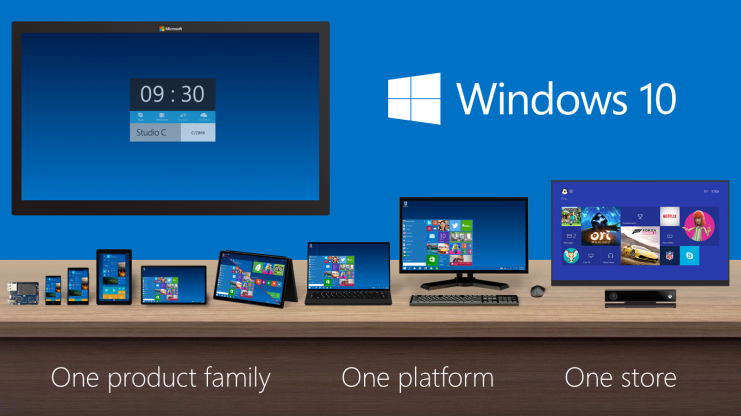
Microsoft has finally announced its new OS. The Wi-Fi password at today’s intimate San Francisco event was "Windows 2015", leading some to speculate that Microsoft might have chosen to return to naming its OS after the year of launch (a nod to Windows 95/98), but that turned out not to be the case -- a wise move. So what name would the tech giant choose? Not Windows 9, the obvious and expected pick, nor Windows One, the rumored alternative.
No, to the surprise of everyone, Microsoft has revealed that the next version of its operating system will be called… drum roll… Windows 10! Wait, What? Way to confuse consumers Microsoft. I guess Windows X was too close to OSX. Or maybe Microsoft choose Windows 10 because 7 8 9 (seven ate nine)? Infoworld's April Fool's joke got it right.
The operating system will run on a wide range of devices, and Microsoft is summing it up as "One Product family, one platform, one store". Something my colleague Ian Barker rightly observed is rather reminiscent of "Ein volk, ein reich, ein fuhrer". Terry Myerson, executive vice president of the Operating Systems group at Microsoft, focused much of the early part of the presentation on the Enterprise side of things. Microsoft is really going after businesses with the new launch.
Next on stage was Joe Belfiore, giving the audience a very short demo of Windows 10, which turns out to be build 9841, the last leak we saw. The Start menu was, naturally, the first element shown off. Click the Start button and the menu appears. There’s the menu on the left, and tiled apps on the right. Windows 7 crossed with Windows 8. There’s universal search from the Start menu, so you can search your PC and the web.
Although we got the name wrong (as did everyone) the operating system itself is pretty much what all the leaks lead us to expect. Although the demo didn’t really go into too much detail on what Windows 10 offers, you can look forward to virtual workspaces, apps running windowed, and a notifications center. Take a look at our guide on what to expect here.
It was believed the Windows Charms bar would disappear from desktop systems, but it’s still in the build Microsoft demoed. That will change though.
Microsoft is going after keyboard and mouse power users with the OS, and one of the new changes demoed was an improved Command Prompt which gives users the ability to paste in directories using Ctrl+V. Yay.
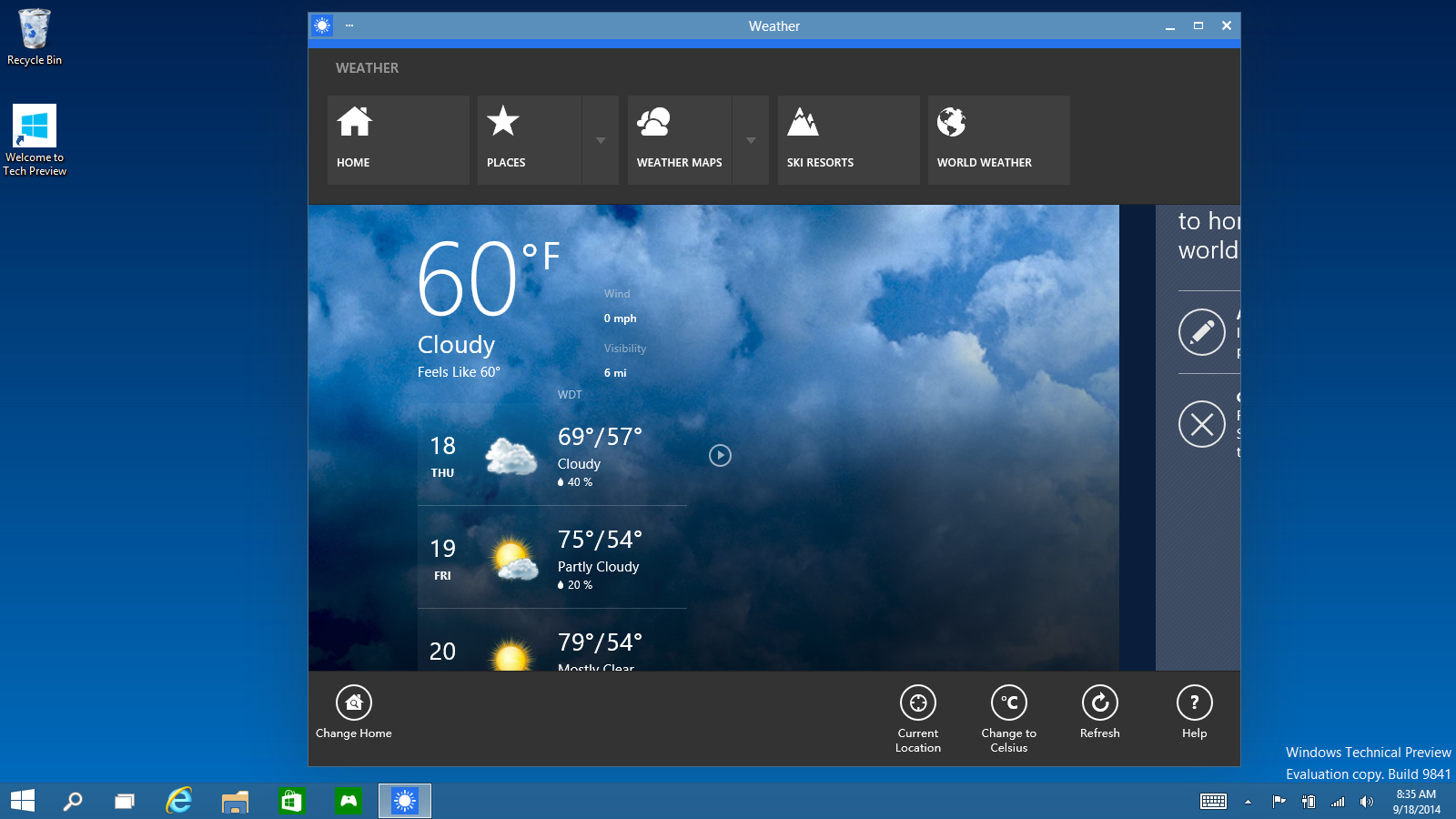
Microsoft also took the wraps off its Windows Insider Program, which will launch tomorrow and be accessible through preview.windows.com. This will give people the chance to test the technical preview build for laptops and desktops and participants will receive a steady stream of builds through the development cycle. Microsoft wants feedback in order to help create the OS consumers actually want. I like this new Microsoft.
"Windows 10 represents the first step of a whole new generation of Windows, unlocking new experiences to give customers new ways to work, play and connect," said Terry Myerson. "This will be our most comprehensive operating system and the best release Microsoft has ever done for our business customers, and we look forward to working together with our broader Windows community to bring Windows 10 to life in the months ahead".
Windows 10 (which will also be the phone OS too) will be shipping in the middle of 2015, but no word on pricing yet (will it be free for Windows 8 users? Who knows) or what upgrade options will be available. If Microsoft can find a way to get people easily upgrading from Windows XP and 7 then it will have a winner on its hands.
-

Windows 9 -- What to expect from the new OS
Publié: septembre 30, 2014, 3:49pm CEST par Wayne Williams

Microsoft will be announcing its new OS later today, with things kicking off at 10am PT/6pm BST. Although we’ve already seen various leaked images and videos, this will be our first official look at Windows 9 (aka Threshold) and Microsoft will reveal what it has planned for the successor to the much maligned Windows 8.
There isn’t a live stream unfortunately, and although a technology preview will be released for the new OS, it isn’t expected to be made available today. So what can we expect from Windows 9?
The return of the Start menu
Of course top of the list of changes in Windows 9 is the reintroduction of the Start menu. Before Windows 8 even launched people were crying out for its return, and that demand has never wavered. The Windows 9 Start menu looks good, and is exactly what most keyboard and mouse users have been asking for. It works much like the Start menu in Windows 7, but adds tiles from the Windows 8.x Start screen which, for me, is the perfect compromise.
Tiles can be added, removed and resized, and you can resize the Start menu itself.
You can use the Start screen if you prefer simply by switching to it in the Navigation properties window. Tablets running Windows 9 won’t have the Start menu, only the Start screen which makes sense.
Better integrated Modern UI
If you hate the Modern UI then you won’t really have to worry about it in Windows 9. You can switch off the tiles in the Start menu, and never see the Start screen or Charms bar. Apps can be run full-screen, or snapped, but also run in a windowed mode on the desktop, which is great news. A new Options button on the right lets you customize them and access system commands.
Switching between running apps is done using the new Task view button on the taskbar.
Virtual desktops
Linux and Mac OS X users are very familiar with the idea of virtual desktops, where you can switch between different workspaces, but Windows 9 will be the first time Microsoft has offered this featured natively. It’s a big boost for productivity, and great news for power users.
Cortana
Microsoft’s personal assistant is expected to find her way from Windows Phone to Windows 9, which makes sense. Cortana wasn’t in any of the leaked builds, so whether she’s included in the technical preview remains to be seen, but we’d bet on the feature being added at some point.
Notifications center
Windows 9 will gain a new Notifications center which will provide a single place to view all of the alerts and messages that the operating system flashes up. You’ll be able to view all of the Windows notifications directly from the system tray, including Skype messages, and delete individual ones, or all notifications at once.
General improvements
Windows 8.x has been a work in progress since launch, and Windows 9 will continue the improvements we’ve seen, while adding a further layer of polish.
What are you hoping for from Windows 9?
-

Windows 10 -- What to expect from the new OS [updated]
Publié: septembre 30, 2014, 3:49pm CEST par Wayne Williams

Microsoft has announced its new OS today, and although we’ve already seen various leaked images and videos, this was our first official look at Windows 10 (not Windows 9, as everyone was expecting), Microsoft's successor to the much maligned Windows 8.
The demo itself was very short, and the technology preview isn't yet available, but we already have a good idea of what the new operating system will offer. Here's a guide to the main features.
The return of the Start menu
Of course top of the list of changes in Windows 10 is the reintroduction of the Start menu. Before Windows 8 even launched people were crying out for its return, and that demand has never wavered. The Windows 10 Start menu looks good, and is exactly what most keyboard and mouse users have been asking for. It works much like the Start menu in Windows 7, but adds tiles from the Windows 8.x Start screen which, for me, is the perfect compromise.
Tiles can be added, removed and resized, and you can resize the Start menu itself.
You can use the Start screen if you prefer simply by switching to it in the Navigation properties window. Tablets running Windows 10 won’t have the Start menu, only the Start screen which makes sense.
Better integrated Modern UI
If you hate the Modern UI then you won’t really have to worry about it in Windows 10. You can switch off the tiles in the Start menu, and never see the Start screen or Charms bar. Apps can be run full-screen, or snapped, but also run in a windowed mode on the desktop, which is great news. A new Options button on the right lets you customize them and access system commands.
Switching between running apps is done using the new Task view button on the taskbar.
Virtual desktops
Linux and Mac OS X users are very familiar with the idea of virtual desktops, where you can switch between different workspaces, but Windows 10 will be the first time Microsoft has offered this featured natively. It’s a big boost for productivity, and great news for power users.
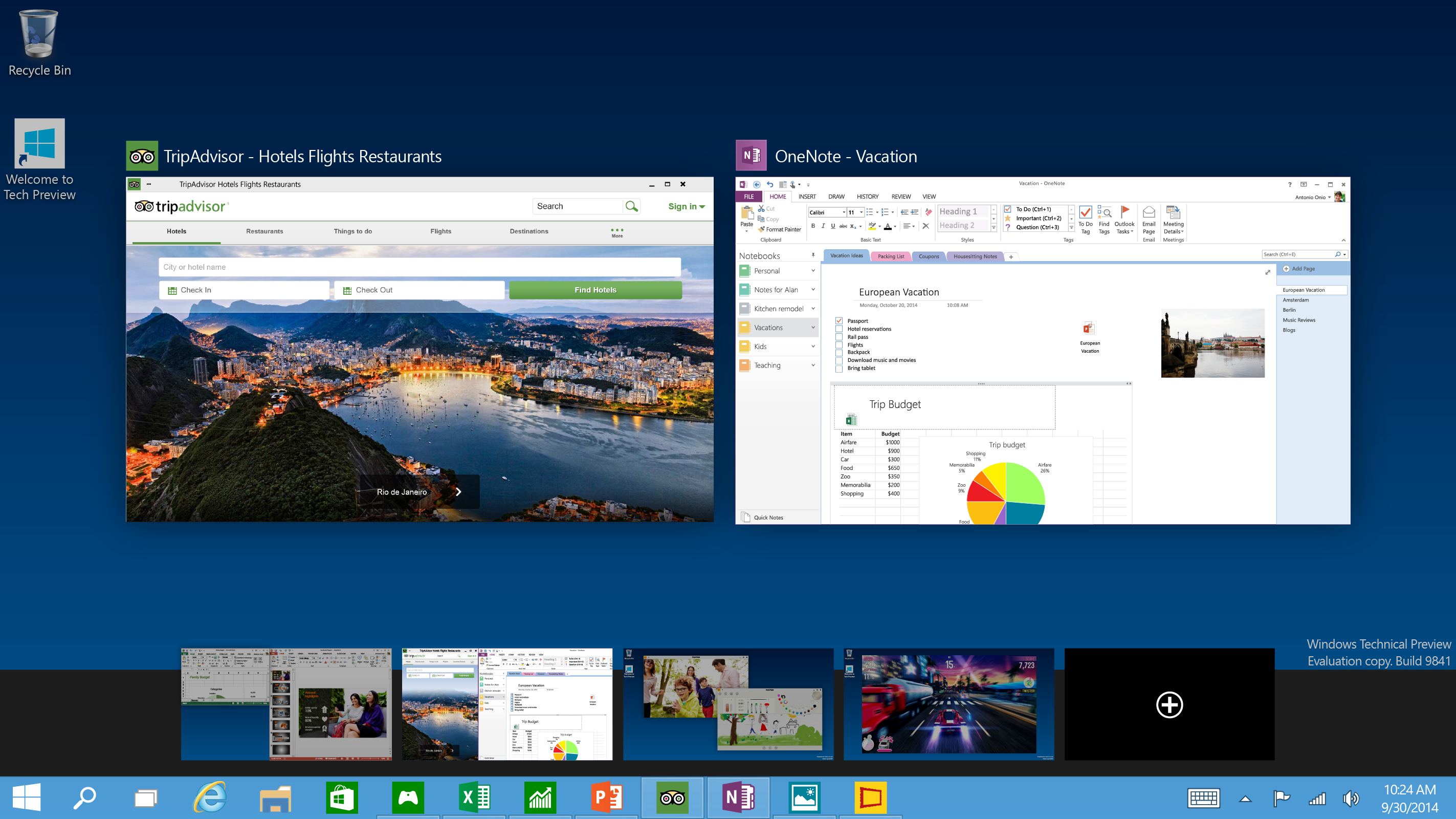
Cortana
Microsoft’s personal assistant is expected to find her way from Windows Phone to Windows 10, which makes sense. Cortana wasn’t in any of the leaked builds, so whether she’s included in the technical preview remains to be seen, but we’d bet on the feature being added at some point.
Notifications center
Windows 10 will gain a new Notifications center which will provide a single place to view all of the alerts and messages that the operating system flashes up. You’ll be able to view all of the Windows notifications directly from the system tray, including Skype messages, and delete individual ones, or all notifications at once.
General improvements
Windows 8.x has been a work in progress since launch, and Windows 10 will continue the improvements we’ve seen, while adding a further layer of polish.
What are you hoping for from
Windows 9? Windows 10. -

HTC One (M8) bends just as much as the iPhone 6 -- and the 6 Plus is stronger than both
Publié: septembre 30, 2014, 10:29am CEST par Wayne Williams
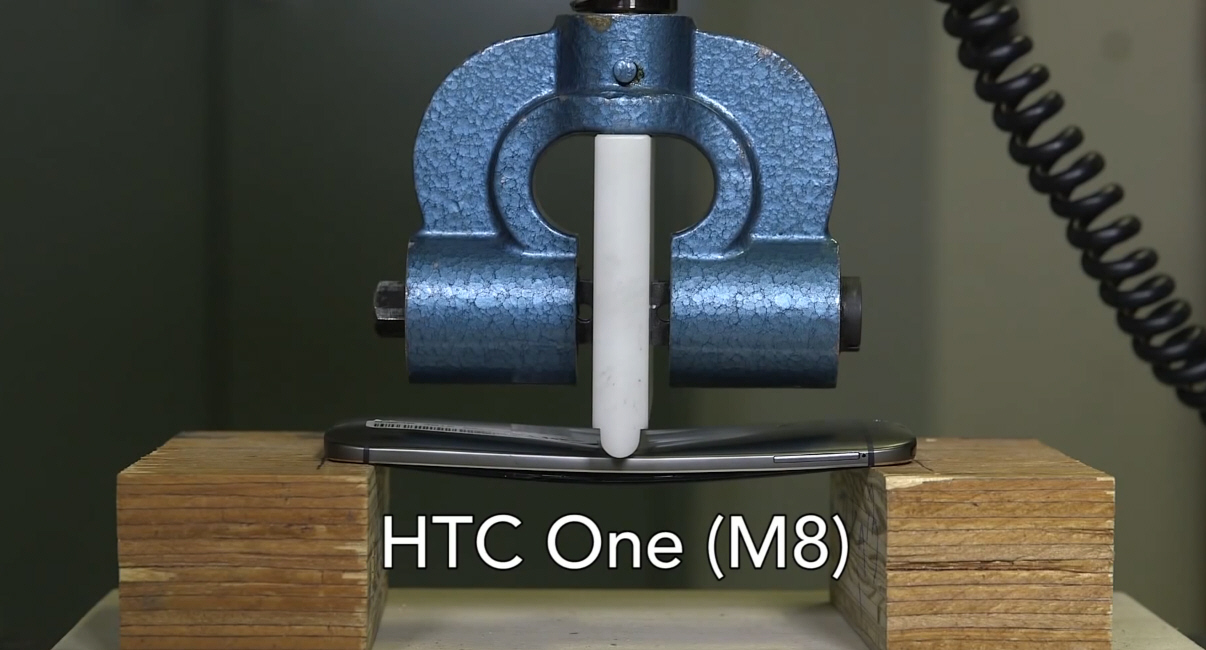
When reports first surfaced that the new iPhone 6 and 6 Plus were susceptible to bending after a just a few days of everyday use, it looked as if Apple had a major problem on its hands. Tech blogs and Apple haters were quick to seize on the flaw, coining the term BendGate.
Apple downplayed the problem, saying it had only received nine complaints relating to bent phones -- out of ten million sales -- and now independent testing by Consumer Reports shows not only does it take a lot of force to bend an iPhone 6, but the HTC One (M8) also deforms when the exact same amount of pressure is applied.
Consumer Reports used an Instron compression test machine to apply pressure to six smartphones -- the iPhone 6, iPhone 6 Plus, HTC One (M8), iPhone 5, LG G3, and Samsung Galaxy Note 3.
The tests applied 10lbs of force for 30 seconds, then upped the pressure in 10lb increments, noting when the phones began to bend.
Both the iPhone 6 and HTC One (M8) bent when 70lbs of pressure was applied. The iPhone 6 Plus held out until 90lbs, the older iPhone 5 and LG g3 withstood up to 130lbs, and the strongest of the bunch was the Samsung Galaxy Note 3 which took 150lbs of pressure before it started to yield.
After testing had completed, both the iPhone 6 and HTC One (M8) continued to work, despite being badly bent out of shape, so additional pressure was applied to discover at what point it really was game over. The HTC smartphone gave up first, at 90lbs, followed by the iPhone 6 at 100lbs.
Consumer Reports also tested some pencils for comparison, and found it took 80lbs to break four.
-

Apple tests the iPhone 6's durability using Windows XP
Publié: septembre 26, 2014, 11:37am CEST par Wayne Williams
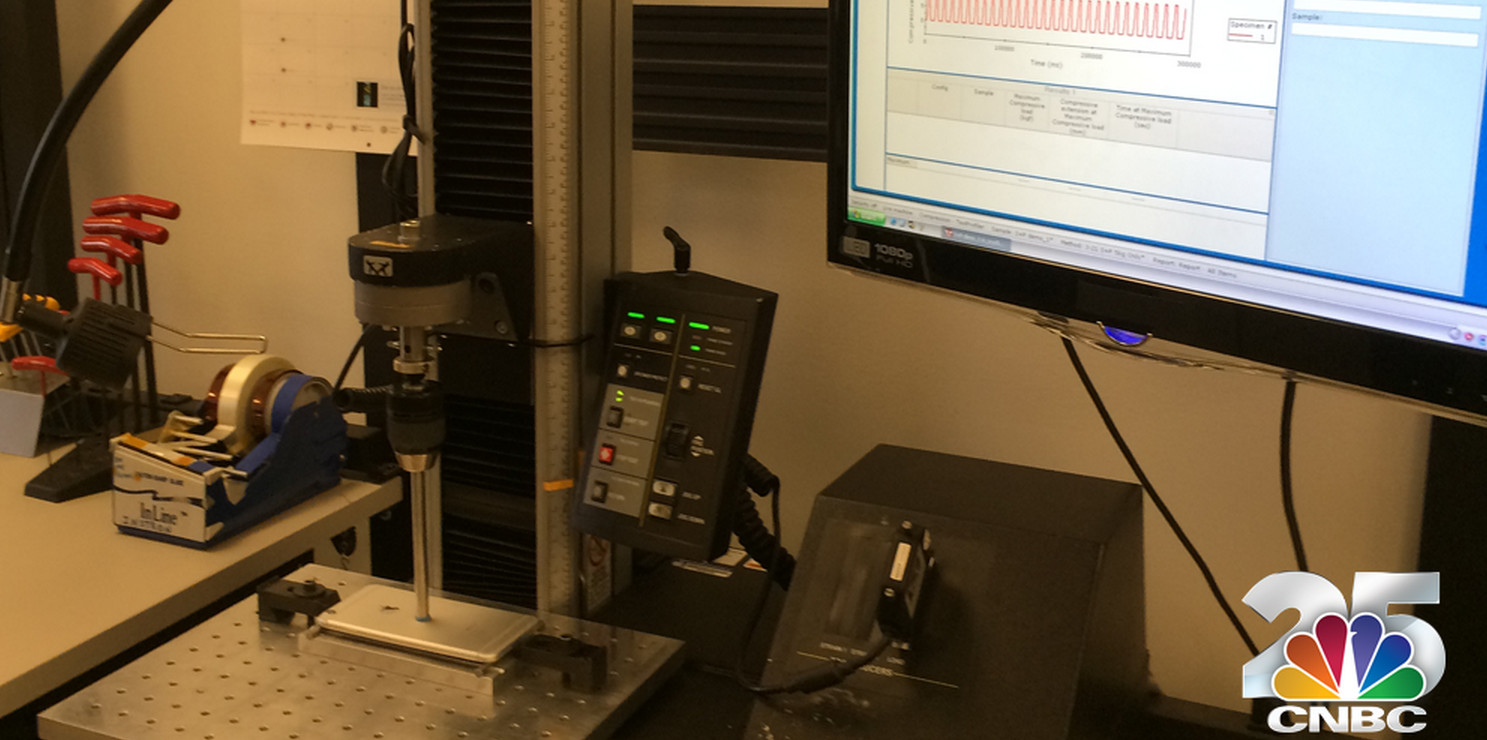
Apple has been under fire this week over claims that the iPhone 6 and 6 Plus bend when carried around in a tight jeans pocket, or someone making a YouTube video exerts a lot of force on the device. In an effort to counter this bad press, the tech giant has announced that just nine customers (to date) have contacted Apple with a bent iPhone (out of ten million), and it even went so far as to give CNBC an exclusive look inside its testing labs.
Anyone worried about how rigorously Apple tests its phones will have been calmed by the news that the iPhone 6 was exhaustively tested 15,000 times before being released, and the video showing that Apple uses only state-of-the-art equipment when testing for endurance and durability was reassuring too. Although CNBC then tweeted a picture from the labs revealing test results being recorded on a less-than state-of-the-art Windows XP system.
Yes, that’s right, at the heart of Apple’s testing facility are systems still running the thirteen year-old OS that Microsoft stopped supporting way back in April.
Of course the fact that Apple’s testing facility has systems running Windows XP isn’t really a big deal -- XP is still used in an estimated 53 percent of businesses after all -- and it doesn’t affect the testing process in any way, but it is amusing that Apple’s testing equipment relies on an ancient operating system from arch rival Microsoft.
Apple opens testing facility to CNBC in an effort to calm 'bend-gate': [t.co] pic.twitter.com/HhLhESYGr1
— CNBC (@CNBC) September 25, 2014
-

Emma Watson nude photos site aims to shut down 4chan
Publié: septembre 24, 2014, 11:57am CEST par Wayne Williams

The number of female celebrities who have had personal photos and videos leaked as part of what has been dubbed The Fappening is growing all the time. The list includes actresses such as Jennifer Lawrence, Amber Heard and Hayden Panettiere.
EmmaYouAreNext.com appeared a few days ago, and displayed a clock counting down to the release of nude photos of Harry Potter actress Emma Watson. According to reports, the leaked content would appear on Friday, and 4chan was implicated in the site’s creation. But things are not at all what they seem.
In a matter of days EmmaYouAreNext.com had seen over 48 million visitors, been liked/shared seven million times on Facebook and tweeted about three million times. The story was covered by news organizations across the web.
However, not everyone believed EmmaYouAreNext.com was genuine. Investigators looking into the site first began to smell a rat when they discovered the Apache Server Status showed the website was being hosted on the same server as a site belonging to social media marketing enterprise Rantic Marketing. It was then spotted that many of the tweets about the site were identical and came from Twitter users with one thing in common -- they all followed Rantic.
No doubt Rantic was hoping to reveal its involvement -- rather than nude Emma Watson photos -- on Friday, but with the company’s plans blown, it has had to come clean prematurely.
Visitors to EmmaYouAreNext.com now find themselves redirected to Rantic.com, where a message details the true purpose of the site:
Spread the word
Join us as we shut down 4chan and prevent more private pictures from being leaked. None of these women deserve this and together we can make a change.
The site also promotes the hashtag #shutdown4chan and includes a letter to the president of the United States:
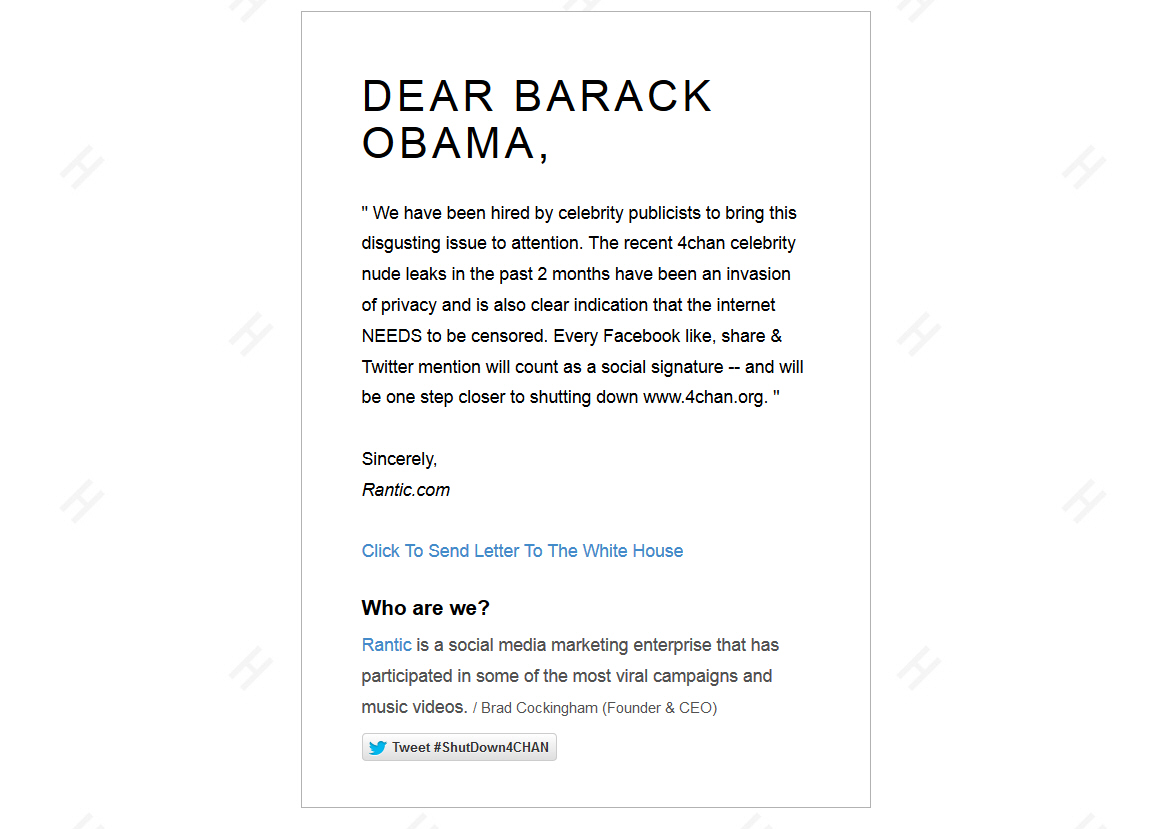
Visitors can click a link to send a copy of the letter to The White House. Although, it has to be said, if you’re going to a website looking for naked pictures of Emma Watson, you probably aren’t going to be very interested in emailing the president to express outrage about leaked celebrity photos.
No doubt Emma Watson will be breathing a sigh of relief (for now) but what do you think of the news? Clever piece of marketing with a noble aim, or just misguided silliness? Leave your comments below.
Image Credit: Sheftsoff/Shutterstock
-

The new iPhone 6 recharges in under two minutes in the microwave*
Publié: septembre 23, 2014, 8:03pm CEST par Wayne Williams
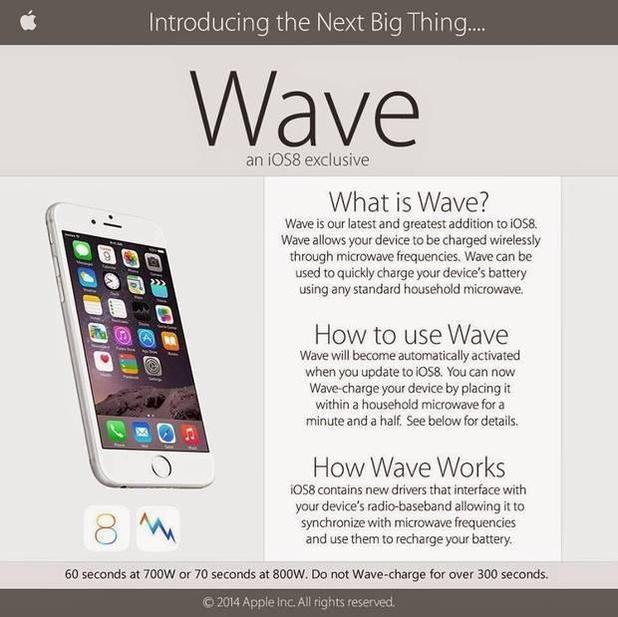
Apple’s iOS is an amazing operating system. When iOS 7 came out last year, people were thrilled to discover it made their iPhones waterproof. And iOS 8 is no less magical, as it comes with a new 'Wave' feature which lets users recharge a phone in just two minutes, simply by microwaving it.
Of course, neither the waterproofing nor the new super-quick charging feature is true, it’s just a practical joke spreading across the internet, but some poor fools could well fall for it.
Wave first appeared in an official looking advert on 4chan (where else!) where it claims to be the "latest and greatest addition to iOS 8" and will allow your device to be "charged wirelessly through microwave frequencies". All you have to do is place an iPhone in a household microwave for a minute and a half, although exact times will vary depending on your microwave’s power.
The advert warns users against Wave-charging their devices for over 300 seconds though… It doesn’t say what might happen, but expect bad things.
A number of photos of microwaved iPhones have popped up on Twitter, but most of them (if not all in fact) appear to just be part of the hoax.
Just when I think he gets no dumber, he try's charging his phone using a microwave... #anyonecangetahsdiploma pic.twitter.com/YejcSGxqs5
— ChristianRenee' (@Cee_Payton) July 4, 2014
I tried using the new IOS 8 feature WAVE where you can charge your phone with a microwave, does not work @Apple pic.twitter.com/IWsWnVboUl
— nick (@Fallenbot) September 18, 2014
*except it doesn't. Obviously.
-

Master Outlook.com with help from The Mother-in-Law, The Cleaner, and The Golden Child
Publié: septembre 23, 2014, 6:56pm CEST par Wayne Williams
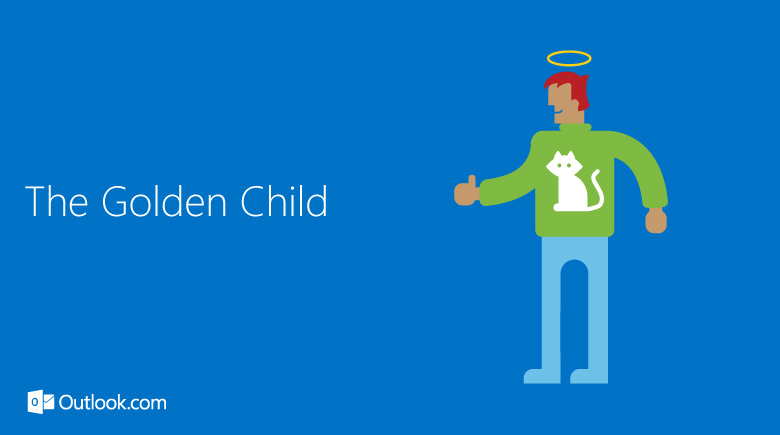
Microsoft introduced Advanced Rules to its webmail service back in May, with the aim being to give users more control over how emails are sorted, and filed. You can chain together rules in whatever ways suit you.
Although it’s an undoubtedly powerful inclusion, not everyone will understand how to use the rules, or grasp the possibilities offered. For that reason, Microsoft has put together a blog post offering a collection of useful examples, each with an amusing name, such as 'The Golden Child' (helps you remember things), 'The Auto-Archiver' (helps you get organized) and 'The Bouncer' (protects your inbox from mail you don’t want).
Best of all, Microsoft doesn’t just provide boring instructions on how to set up the Advanced Rules on offer. If you like a rule, or a 'personality' as the tech giant refers to them, you just need to click on an image and you’ll be taken to your Outlook.com account where you can set up the rule in question.
As well as 'The Golden Child', 'The Auto-Archiver' and 'The Bouncer', you can set up 'The Bestie' (moves emails from close friends to the top of your inbox), 'The Cleaner' (deletes read newsletters after 30 days), 'The Mother-in-Law' (flags messages from important people), 'The Tax Collector' (puts shopping receipts in the one place), 'The Couponer' (filters potential freebies from newsletters), and 'The Umbrella' (protects you from a deluge of newsletters).
You can view the various personalities and set them up here.
-

iPhone 6 is Apple's least breakable iPhone to date
Publié: septembre 22, 2014, 5:16pm CEST par Wayne Williams

Apple makes gorgeous looking and highly desirable products, but unfortunately for buyers, the iPhone and iPad are among the most breakable devices in the world. Back in February, SquareTrade tested a bunch of gadgets, and rated the iPad mini as the most breakable, with the iPad Air in third place, the iPhone 5c in fifth, and the iPhone 5s in eighth.
It was hoped by many that Apple’s new phones would have sapphire crystal screens, but in the end the tech giant went for ion-strengthened glass. There’s good news for Apple users though, and that’s new breakability tests conducted by SquareTrade show the new devices are Apple’s least fragile to date.
The tests, which are carried out by robots to ensure consistency, assessed the new phones against eight criteria -- size, weight, panel strength (front and back), a drop test, a slide test, a gripability test and test for water resistance.
The tests show how far the phones slide when pushed across a table on their backs, how well they withstand drops from four feet and how well they perform during and after being dunked in water for 10 seconds. The phones are then rated out of 10 for durability, with 10 signifying the highest risk.
Overall Apple's iPhone 6 scored the best with a 4, the iPhone 6 Plus managed a 5, and the iPhone 5s achieved a 6. In comparison, the Samsung Galaxy S5 only managed a 6.5. The Samsung phone got poor marks on several tests including the slide test (how easy it is for a phone to slide off a table and fall on to the floor).
Although the iPhone 6 Plus didn’t fare too badly, in the drop test the glass screen survived, but the case came away from the phone. Nasty.
You can watch the tests in this video.
In related news, according to a new study organized by SquareTrade, UK consumers have spent close to £5 billion (or £78 per head) on getting broken smartphones and tablets repaired in the past two years. It also reveals that more than a third (37 percent) of respondents have damaged their phones in some way. 27 percent admit to not owning a case to protect their device, and 70 percent don’t have any kind of protection or insurance.
-

iPhone 6 is much more popular than the 6 Plus
Publié: septembre 22, 2014, 12:43pm CEST par Wayne Williams
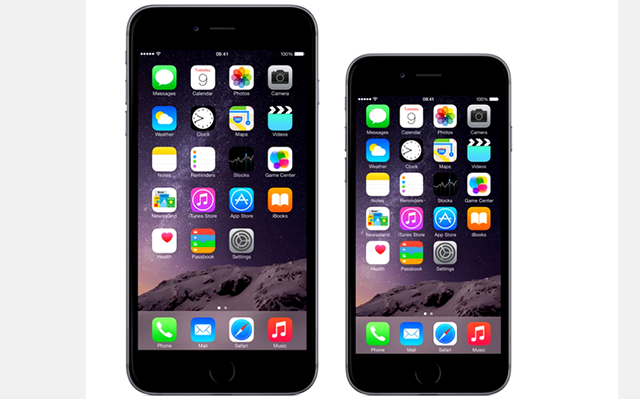
Phablets might be increasing in popularity globally, but iPhone users aren’t blown away by the idea of carrying around a giant phone, if early adoption data is to be believed.
Although it’s very, very early days for Apple’s new handsets, the iPhone 6 is already proving to be a much more popular draw than the giant iPhone 6 Plus, although as my colleague Joe Wilcox points out in his 10 things you should know before buying iPhone 6 or 6 Plus article, limited stock means the 6 Plus is already sold out in a lot of locations, which will obviously have an impact on the number of people who own one.
The iPhone 6 vs. 6 Plus data we have comes from MixPanel which monitors mobile apps and sites and is able to determine all sorts of things, including how many of the two types of new device are currently in use. The data is being updated hourly, so you can see how the trend is developing over time.
The iPhone comparison graph shows that on Saturday, 3.22 percent of users had the iPhone 6, compared to just 0.49 percent who were on a 6 Plus. On Sunday, iPhone 6 use dropped to 2.56 percent, and 6 Plus was down to 0.40 percent. Today, the iPhone 6 hit a high of 3.94 percent, while the 6 Plus was on 0.42 percent. The gap between the two devices has narrowed since then, and it's important to remember this shows usage, not device sales.
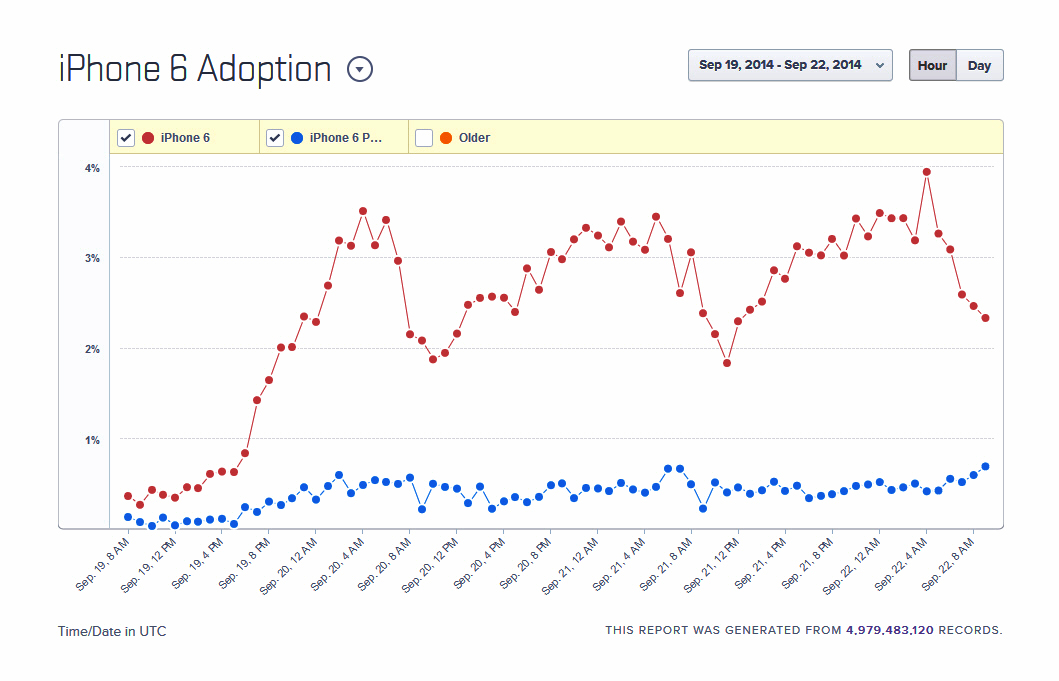
As an aside, MixPanel is also monitoring iOS 8 adoption, which shows the new OS is off to a slow, but steady start.
Obviously, it’s too early to say whether the iPhone’s 6 dominance over the 6 Plus will continue, but it’s safe to assume it will. Phablets are an acquired taste, and the majority of existing iPhone owners looking to upgrade are likely going to go for the bigger, but not ginormous model.
Although we don’t know how many of each type of handset Apple shipped, it’s a fair bet the company produced far fewer of the 6 Plus, and will look to adjust its inventory once it has a decent amount of sales data to guide it.
Interestingly, in the poll we ran a fortnight ago, out of the 484 votes cast so far 15 percent of respondents said they were interested in an iPhone 6, while 26 percent were drawn to the 6 Plus.
-

The Fappening part 2 -- More naked celebrity photos leaked
Publié: septembre 21, 2014, 1:11pm CEST par Wayne Williams

Three weeks ago hundreds of nude celebrity photos were leaked onto the internet. Dubbed The Fappening, the collection included pictures of Jennifer Lawrence, Kate Upton, Mary Elizabeth Winstead, Jessica Brown Findlay, and Kaley Cuoco, with the majority of the personal images apparently obtained from hacked iCloud accounts.
Apple reacted to the leak by increasing iCloud security, 4chan, the site where the images first appeared, took the opportunity to introduce a DMCA policy, and Reddit, one of the main places people went to in order to view the photos, banned Fappening subreddits. But despite all that, just as everything appeared to be calming down, there’s been a fresh wave of leaked images.
It’s not clear yet where the new photos have come from -- if they’re part of the original leak, or a new one -- but the images appeared briefly on 4chan and Reddit before being swiftly deleted. However, as you know, once something has appeared on the internet it can never be fully removed, and the new photos are freely available on other sites across the web.
The new set reportedly includes photos of Kim Kardashian, Vanessa Hudgens, Mary-Kate Olsen, Leelee Sobieski, Aubrey Plaza, Amber Heard, and US soccer star Hope Solo, along with new shots of Jennifer Lawrence and Hayden Panettiere -- both victims of the original leak.
Image Credit: Pablo Calvog/ Shutterstock
-

Microsoft postpones Xbox One launch in China
Publié: septembre 20, 2014, 6:29pm CEST par Wayne Williams

Microsoft was set to officially start selling its next generation games console in China on September 23, but it appears the tech giant’s plans have gone somewhat awry.
Late on Friday the company issued a statement admitting that the launch was being postponed. "Despite strong and steady progress, we are going to need more a bit more time to deliver the best experiences possible for our fans in China," Microsoft said, somewhat cryptically.
"At Xbox, we pride ourselves on delivering first rate gaming and entertainment experiences and to allow us to deliver on that promise we need to reschedule the launch of Xbox One," Microsoft continued.
Microsoft didn’t give a reason for the delay, but is still pushing ahead with its plans. "Working with our partner, BesTV, we look forward to launching in China by the end of this year".
Microsoft states that customers in China who have pre-ordered the console will be among the first to receive it, and "will also get an added bonus".
-

Windows 9 build 9841 screenshots and details leak
Publié: septembre 19, 2014, 10:04am CEST par Wayne Williams

Last week we had leaked screenshots and even videos from Windows 9 build 9834, and now new screens have appeared from build 9841, or what might well be very close to the actual Technical Preview.
Whereas all the leaks last week came from WinFuture.de, these new screens come from WinSuperSite.com, which also has information on the Start menu (naturally), apps, files, personalization and more. One of the new things we learn is that anyone trying out the preview build will be able to provide feedback directly to Microsoft through a Feedback app. There can be no accusations of Microsoft not listening to customers this time around!
There’s nothing hugely different about the Start menu in the latest screenshot, it still shows tiles on the right and a Windows 7-style menu on the left. Tiles can be added, removed and resized, and you can resize the Start menu itself. The new build confirms that you will be able to use the Start screen if you prefer simply by switching to it in the Navigation properties window.
As for apps, they are much the same as they are now, except they can be run in a window and a new Options button on the right lets you customize them and access system commands.
There was some uncertainty about the fate of the Charms bar, but this new build confirms that while it will be totally absent in the desktop mode, it's still in the touch-friendly Modern UI, which makes sense as it works well there.
Switching between running apps is done using the new Task view button that’s to be found on the taskbar, and this can also be used to position and snap apps.
Build 9841 isn’t massively different from 9834, it’s just a bit more polished, suggesting we are unlikely to see any surprise features in the Technical Preview.
Microsoft is holding an event to announce Windows 9 on the 30 September, but it looks as if it could be early October now before we get our hands on the test release.
-

Xiaomi Redmi 1S is the 4th best-selling smartphone -- in the world!
Publié: septembre 18, 2014, 3:27pm CEST par Wayne Williams
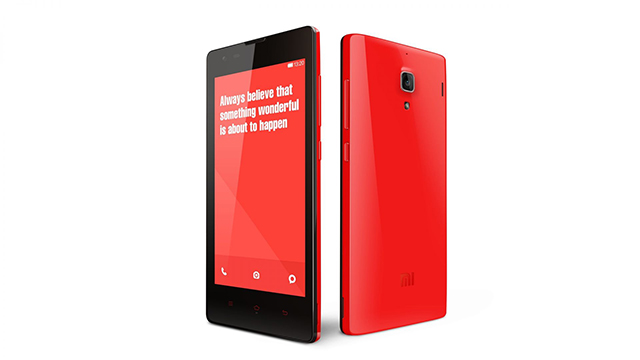
Apple might be hoping to make big inroads in China with the iPhone 6 and 6 Plus, but it has some stiff opposition standing in its way.
Xiaomi is a Chinese smartphone maker known for producing powerful yet affordable handsets. While its name might mean little to you, Xiaomi is now the world’s fifth largest smartphone vendor and the company’s devices are so popular in China that they account for 14 percent of the smartphone shipments in that country, easily beating the likes of Samsung, Lenovo, and Huawei. One of its handsets, the Xiaomi Redmi 1S, is so successful it now ranks as the world's 4th best-selling smartphone.
Think about that for a moment. According to new research from Strategy Analytics’ Country Share Tracker (CST), in Q2 2014, the Redmi 1S was, by volume, more popular than most of the other smartphones in the world, which underscores just how big the China market has become. The Redmi 1S is insanely popular in India too, with 40,000 handsets selling out in just 4.2 seconds in flash sale held on Flipkart earlier this month.
Xiaomi has only been producing smartphones for four years but has achieved incredible success due to its willingness to sell devices for very low margins, and engage in flash sales to gain market share.
The Redmi 1S is a dual SIM smartphone with a 4.7-inch IPS LCD display offering a resolution of 720 by 1280 pixels. It's 9.9mm thick, weighs 158g, and is powered by a Qualcomm Snapdragon 400 chipset, coupled with an Adreno 305 graphics processor and 1GB of RAM. It comes with 8GB of internal storage, expandable to 64GB via a microSD card. Camera-wise it offers an 8MP rear shooter and a front-facing 1.6MP camera.
The phone has a 2,050 mAh battery and connectivity options include 3G, Wi-Fi a/b/g/n, Bluetooth, GPS and GLONASS. It runs a custom version of Android 4.3 Jelly Bean.
All for the equivalent of around $100.
Xiaomi says it plans to attack the North American market starting next year.
-

Mobile Internet use soars, but tablets suffer at the hands of larger smartphones
Publié: septembre 18, 2014, 1:08pm CEST par Wayne Williams
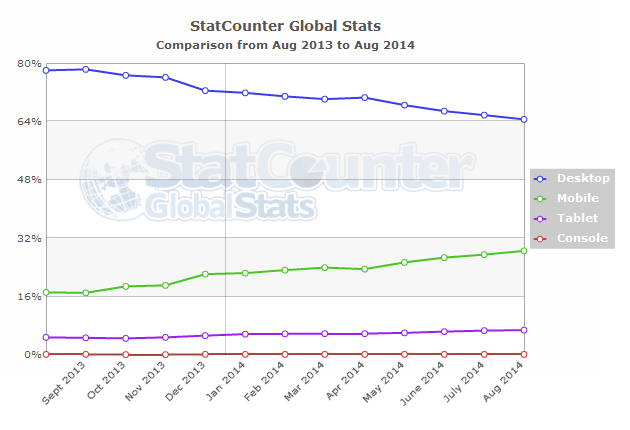
How do you view BetaNews and other websites? While desktop browsers are still the most popular way of accessing the web for most of the world, mobile internet use is rapidly gaining in popularity.
According to independent website analytics company StatCounter, the use of mobile devices to access the internet has increased by 67 percent worldwide over the past 12 months, from 17.1 percent to 28.5 percent (as you might expect, with its tech-savvy audience, BetaNews has a higher portion of mobile users, but more on that later).
Mobile internet usage in the US now stands at 24.4 percent, showing an increase of 73 percent compared to last year, while UK mobile internet usage is up to 23.2 percent, an increase of 69 percent.
Three years ago, the desktop was the main platform for accessing the web across the world, but that has changed dramatically. "Mobile usage has already overtaken desktop in several countries including India, South Africa and Saudi Arabia," says Aodhan Cullen, CEO, StatCounter. "All indications are that this trend is set to continue, which creates new challenges and opportunities for businesses globally".
To show just how much things have changed in that short period of time, StatCounter has produced this animated Gif.
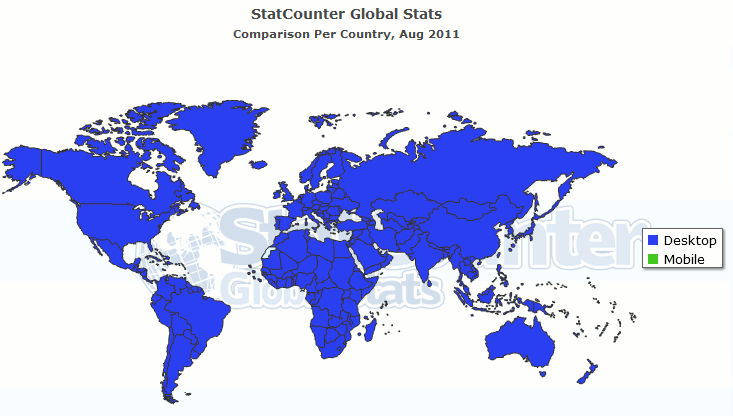
Interestingly, tablet devices aren’t driving this trend as much as you might think. They account for just 6.8 percent of internet usage, compared to 4.8 percent 12 months ago. Aodhan Cullen, CEO, StatCounter says "The slower growth of tablets may be due to the trend towards larger screen smartphones. It will be interesting to see whether Apple’s new larger iPhone 6 Plus becomes a tablet killer".
StatCounter announced the findings to mark the launch of the company’s new web analytics apps for iOS and Android.
Wondering how many of your fellow readers view BetaNews on mobile devices? Well, based on monthly Google Analytics figures, it’s around 32.56 percent, with smartphones accounting for 24.80 percent and tablets 7.75 percent. The two most popular single devices are the iPhone (8.9 percent of all traffic) and iPad (5.47 percent).
-

How to prepare your iPhone and/or iPad for iOS 8
Publié: septembre 17, 2014, 1:55pm CEST par Wayne Williams
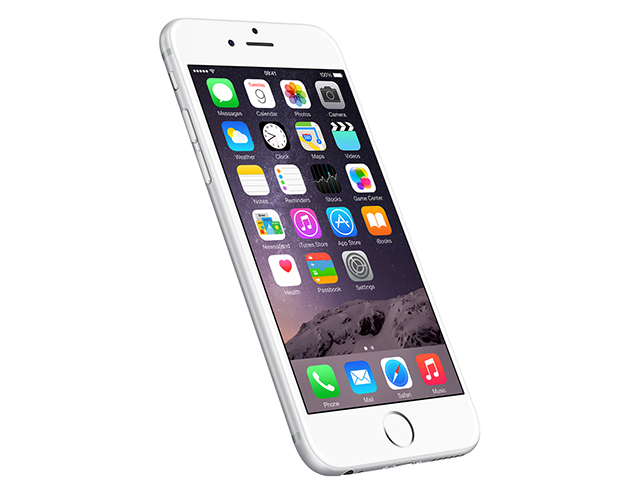
The latest version of Apple’s mobile operating system is set to be released officially today.
Before you install it, it’s worth taking a few steps to make sure your device is ready for the update (and of course if it’s jailbroken, and you want to keep it that way, you’ll want to avoid updating until a jailbreak is made available for the new OS). Here’s what you should do in advance.
Download iTunes 11.4. Make sure you’re running the latest version of iTunes as this offers support for iOS 8 syncing. You can download the latest version here.
Free up space. Major iOS updates require a fair amount of free space, so make sure you have enough room for the update by cleaning out unwanted photos and videos, and/or by uninstalling unused apps. Go to Settings > General > Usage. A list of apps will appear, with the largest ones shown first. Tap an app to delete it.
Back up your iDevice. You can do this in one of two ways -- using iCloud (Go to Settings > iCloud > Storage & Backup > Back Up Now) or by connecting your iPhone or iPad to your computer and launching iTunes.
Make sure you have enough battery life. If you choose to perform an over-the-air update (which is the easiest option), check you have at least 50 percent battery life. Better yet, connect the device to the mains while you’re performing the update.
As to when the update will be available we’re expecting it to make an appearance around 10am PST/6pm BST. As it’s a global roll out, updating your device the moment the new OS becomes available is likely to be a complete nightmare as the demand for it will be incredible. Upgrading to iOS 7 on the day of release was a frustrating experience for many, and one that will likely be repeated again…
-

How to do the smart thing and migrate from Android to iPhone 6
Publié: septembre 17, 2014, 11:15am CEST par Wayne Williams

For the majority of Android users, the idea of moving from a handset running Google’s mobile operating system to the iPhone holds zero appeal. But I did it last year, and I couldn’t be happier. For me, iOS is by far the superior operating system (and I use iOS and Android daily), and the iPhone is a great handset.
If you’re thinking of making the move from Android to one of Apple’s new sized-up iPhones (and you won’t regret it), the process is pretty painless and Apple has created a new support page explaining how to move your photos, music, documents, and more.
The page is divided into six links covering Mail, Contacts and Calendars, Photos and Videos, Music, Books and PDFs, Documents, and Apps, and clicking on each one will provide you with all the information you need, although the Apps section is no great revelation -- it just says to go to the Apps Store and find and download the apps you use. I think most people can work that one out for themselves.
The page is available to explore here.
If you’ve only ever used Android, then you will find iOS a rather alien environment at first, but it won’t take long to learn your way around it.
Are you an Android user planning to switch to the iPhone? Let me know in the comments.
Image Credit: BoBaa22/Shutterstock
-

Hack your health using fitness technology
Publié: septembre 16, 2014, 11:44am CEST par Wayne Williams
I’m a big fan of fitness apps and wearable gadgets -- anything that can help make working out more interesting and fun is a big plus in my book, which is why I love apps like Zombies, Run! and Superhero Workout.
I’m not alone either -- one in four smartphone owners use a device to track health, diet or exercise, and fitness apps are among the fastest growing niches in the app market, rising by 49 percent in 2013.
Supplement Mart has created a useful infographic exploring the rising trend of using technology to enhance fitness goals. As well as providing information on the growing popularity of app and fitness technology use, it breaks down how fitness fans use their apps (goal tracking is the number one activity, followed by awareness of health issues, and then motivation).
The infographic also reveals some of the top app and gadget choices for your consideration.

-

Hate U2? Apple offers a tool to remove the free Songs of Innocence album from your iTunes library
Publié: septembre 15, 2014, 8:28pm CEST par Wayne Williams
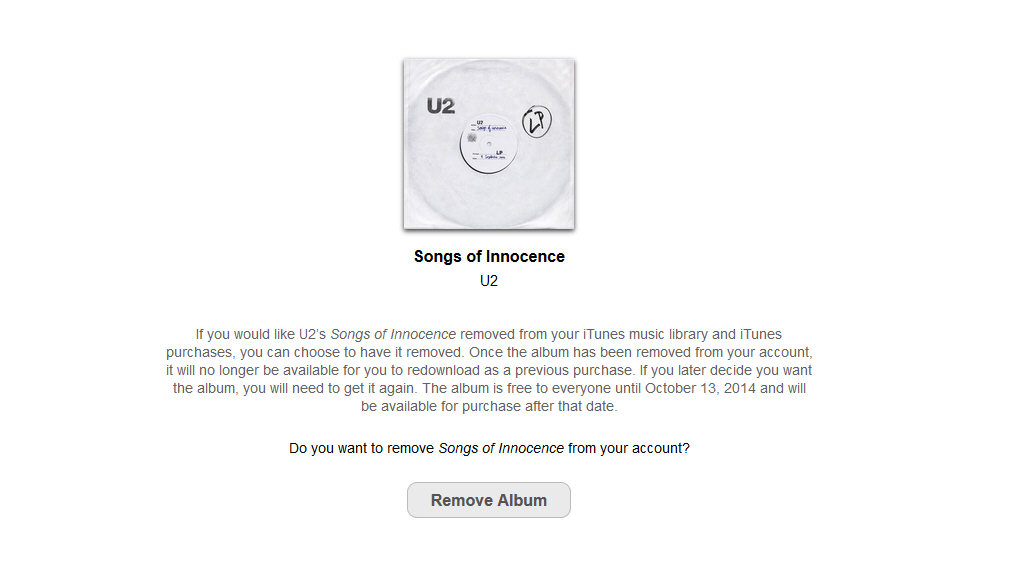
At the end of its iPhone 6/6 Plus/Apple Watch launch last week, the tech giant kindly gave everyone a gift -- a free U2 album. Songs of Innocence is the first album from the Irish band in five years, and Apple made it instantly available to all 500 million plus iTunes registered users. Which was a nice thing to do, after all who doesn’t like a free gift?
It turns out quite a few people were less than pleased to discover U2's new album appearing in their music collections whether they wanted it or not. If you’re one of those people unhappy about the presence of the album, and despite hunting for an easy way of removing it, still haven’t found what you’re looking for, don’t worry -- Apple has released a new tool for the job.
All you have to do is go to this link, hit the Remove Album button and log into your iTunes Store account. All reference to the album’s existence will vanish. If you’ve already downloaded it, you’ll need to manually delete the album from your device(s).
If you change your mind, and decide that yes, you do want the album after all, you’ll be able to download it from iTunes for free (provided you do so before October 13 2014).
Will you be using the tool to remove Songs of Innocence from your iTunes library?
-

The life of Steve Jobs, in an infographic
Publié: septembre 15, 2014, 2:32pm CEST par Wayne Williams
Walter Isaacson's Steve Jobs is a superb biography of the late, great co-founder, chairman, and CEO of Apple, but at 592 pages it’s a bit of a hefty tome.
If you’re interested in Jobs’ life, but don’t have the time, or inclination, to read the full book, there’s always the forthcoming film adapted by Aaron Sorkin to look forward to, or -- if you just want a super quick guide -- there’s this excellent infographic.
Created by Funders and Founders, the infographic starts when Jobs’ parents begin dating and ends when he sadly dies of pancreatic cancer in 2011.
Along the way are major tech milestones such as when he meets fellow Apple co-founder Steve Wozniak (Woz), the creation of the Apple company in Jobs' garage, his getting fired from the firm he built, the $1 million spent on the "1984" Macintosh commercial, the start of Pixar, his return to Apple, and of course his most famous creations -- the iMac, iPod, iPhone and iPad.
There are plenty of non-tech moments from his life too -- such as the first time Steve tried psychedelic drugs, and the birth of his daughter Lisa (the Apple Lisa computer was named after her).
With the new iPhone 6 set to go on sale this week, it seems timely to take a look back at the man who, for many, was Apple.

-

Take a look at Windows 9's new Notifications center
Publié: septembre 15, 2014, 11:13am CEST par Wayne Williams

Last week, thanks to a series of leaked screenshots and videos from build 9834, courtesy of WinFuture.de, we got our first real look at the next version of Windows, including seeing the new Start menu and virtual desktops in action.
That’s not the only new feature being shown off however. In yet another new video we get to see the Notifications center which Microsoft is introducing.
At the moment Windows 8 flashes up notifications in the top right hand corner. If you’re not paying proper attention they are fairly easy to miss and you’ll have no idea what the message said. The new Notifications screen changes all that.
What it does is provide a place where you can view all of the Windows notifications directly from the system tray, including Skype messages.
You can remove individual notifications easily, or clear the lot in one go.
Windows 9 continues to impress and I'm looking forward to trying it out for myself later this month (hopefully).
-

Surface Pro 3 stock sellouts and record iPhone 6 pre-orders make for nice headlines but are meaningless
Publié: septembre 14, 2014, 9:06am CEST par Wayne Williams
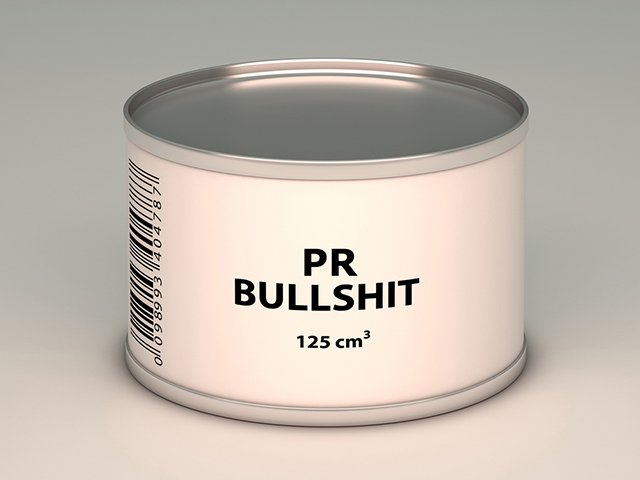
My colleague Brian Fagioli reported some news a couple of days ago that had me smiling. "Microsoft's Surface Pro 3 is a worldwide success -- strong sales cause limited supply" his headline declared. It’s the sort of headline Microsoft would have hoped for when it announced the news that some overseas retailers had run out of Surface Pro 3 stock.
"A worldwide success" is pushing it. What happened was demand outstripped supply, in some countries, and the supply was probably on the low (prudent, if you like) side to begin with. Microsoft announced no numbers, and posted a cleverly worded blog which makes it sound as if Surface Pro 3 is a huge hit. Unless you read what it actually says.
"Given the interest that we saw as part of our US launch, retailers ordered what we thought was a healthy amount of Surface Pro 3s for these new markets. It turns out that we didn't ship enough", Brian Hall, General Manager, Surface Marketing says.
"Given the interest" is a fun way to begin that sentence. It could mean, "Given the high interest" or "Given the low interest". If you assume it’s not the implied first meaning but the second one, what he’s really saying is "Given the limited interest in the US, overseas retailers took more stock than we expected them to, and by golly they cleared the lot!"
The fact that Surface Pro 3 has sold out in some overseas territories is good news for Microsoft and the tech giant’s tablet brand, but it certainly doesn’t mean the device is a success, worldwide or otherwise yet.
When a new product launches stock shortages are common, and demand from people wanting to get their hands on the new release often cause sellouts that paint a picture that might not -- indeed probably won’t -- reflect the truth.
Shortly after Windows 8 launched, Microsoft told the world "Windows 8 upgrade momentum is outpacing that of Windows 7" and here we are a couple of years later waiting for Windows 9 to replace Microsoft's worst selling OS in recent memory.
And let's not forget, the original Surface and Surface Pro "sold out" in a lot of places in the early days too, and we all know how well that turned out to be doing. Shortly after Surface 2 and Pro 2 launched, Microsoft declared it "close to selling out" and now it's claiming the same with Surface Pro 3.
Brian also reported on how well iPhone 6 was doing (taking a swipe at Android users in the process) using a quote from Apple that said "response to iPhone 6 and iPhone 6 Plus has been incredible with a record number of preorders overnight". It is, of course, another rather meaningless statement. It could be a record number of preorders overnight everywhere, or a record number of preorders overnight in Punxsutawney, Pennsylvania Apple doesn't specify, and doesn't give any numbers, either.
When the Apple 5s launched we had stories about how iPhone 5s supplies were limited and my colleague Joe Wilcox wrote the following:
In business perception is everything, and supply shortages generate blogs and news stories and the appearance that the product is super hot-in-demand.
And when a product is super hot-in demand, people want it. They want to jump on that bandwagon and own the product everyone else has. If Microsoft or Apple say "we've plenty of stock, come buy" it will give the impression that no one wants what they're offering, and who wants a product that no one else wants?
So congrats to Microsoft for running out of Surface Pro 3 stock in some parts of the world, and well done to Apple for getting good pre-orders on a new phone with a hugely fanatical fan base. Come back to me when you have some solid sales numbers to offer, okay?
Image Credit: shpock/ Shutterstock
-

Are you a child of the '60s, '70s, '80s or '90s? Your computer use history has the answers
Publié: septembre 13, 2014, 10:48am CEST par Wayne Williams
It’s always nice to take the occasional stroll down memory lane, reminiscing over past experiences and the things you used to like or grew up with.
Our first computers, or game consoles, are usually something of an important milestone in our lives as we discover the possibilities they offer. I had my first computer at the very start of the 1980s, and even to this day I share a slight bond with other users of the same system, due to that shared experience.
When you grew up, where you lived, and when you first got into computers, will define the system you first used and it might be the same as your peers, or something entirely different.
WhoIsHostingThis.com has put together an infographic that will tell you if you’re a child of the '60s, '70s, '80s, '90s, or '00s, based on your computer history. It’s a broad brush picture, naturally, but it offers a fun look back in time, with mentions of CompuServe, Apple II, and, er, Teddy Ruxpin.
What decade were you a child of?
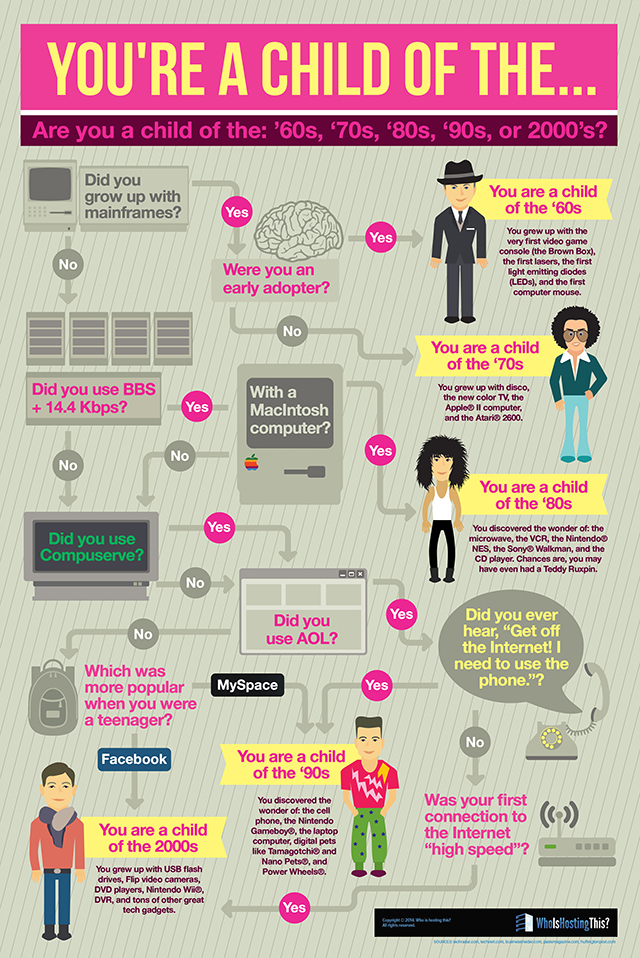
-

Latest Windows 9 videos show live tiles and the virtual desktop feature
Publié: septembre 12, 2014, 9:30pm CEST par Wayne Williams
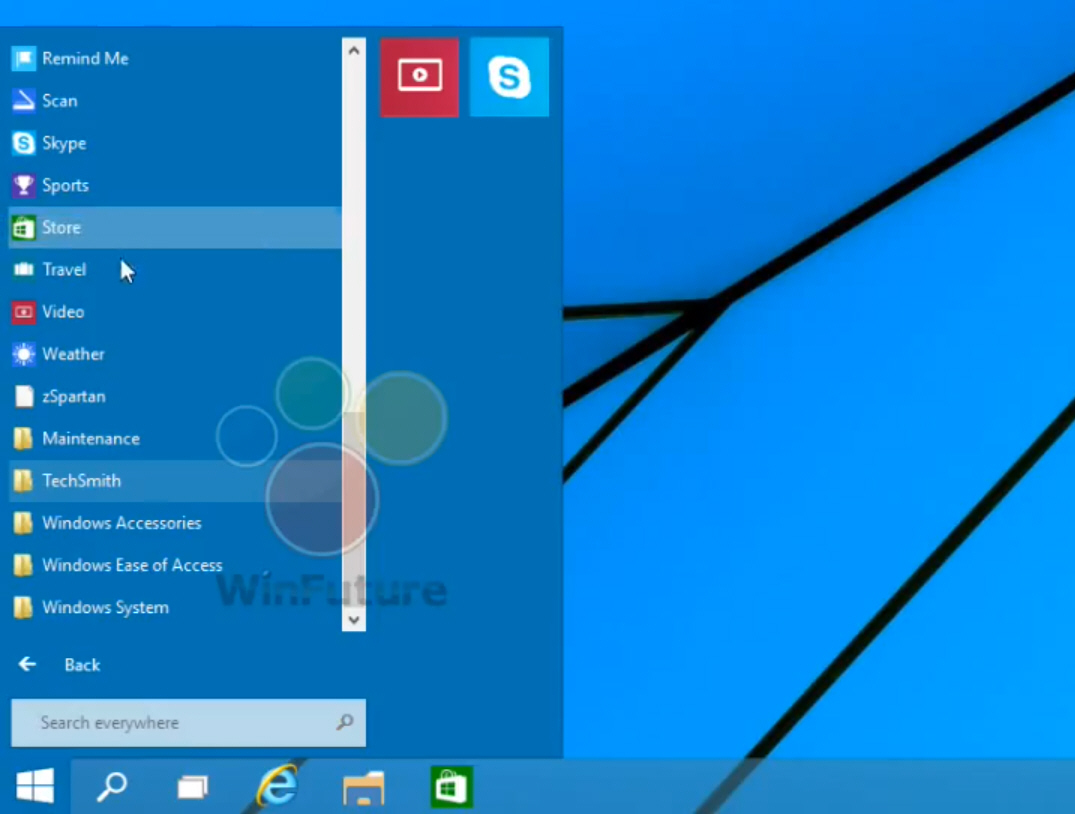
After having released some screenshots from Windows 9 build 9834, an early build of the forthcoming Technical Preview which is expected to debut later this month, WinFuture.de released a video showing off the new Start menu in action.
The site has now followed that up with two new videos. The first gives us another look at the new Start menu and live tiles, while the second shows us how the new virtual desktops will work.
Virtual desktops is a feature new to Windows (unless you installed a third-party tool), but it’s something Linux and Mac OS X users will be very familiar with, and lets you switch between different workspaces. It's a feature that many power users will definitely appreciate.
The video shows how easy it is to add new desktops and switch between them, and the feature is called up simply by clicking the dedicated button on the left side of the taskbar.
With this being an early build of Windows 9, what you see here might not be entirely respective of the finished OS, but it does give us a good idea of what to expect.
Both videos are available to view below. If you haven't already seen it, you can watch the first one here.
-

Watch a video of Windows 9 in action [Spoiler: It looks great]
Publié: septembre 12, 2014, 9:53am CEST par Wayne Williams
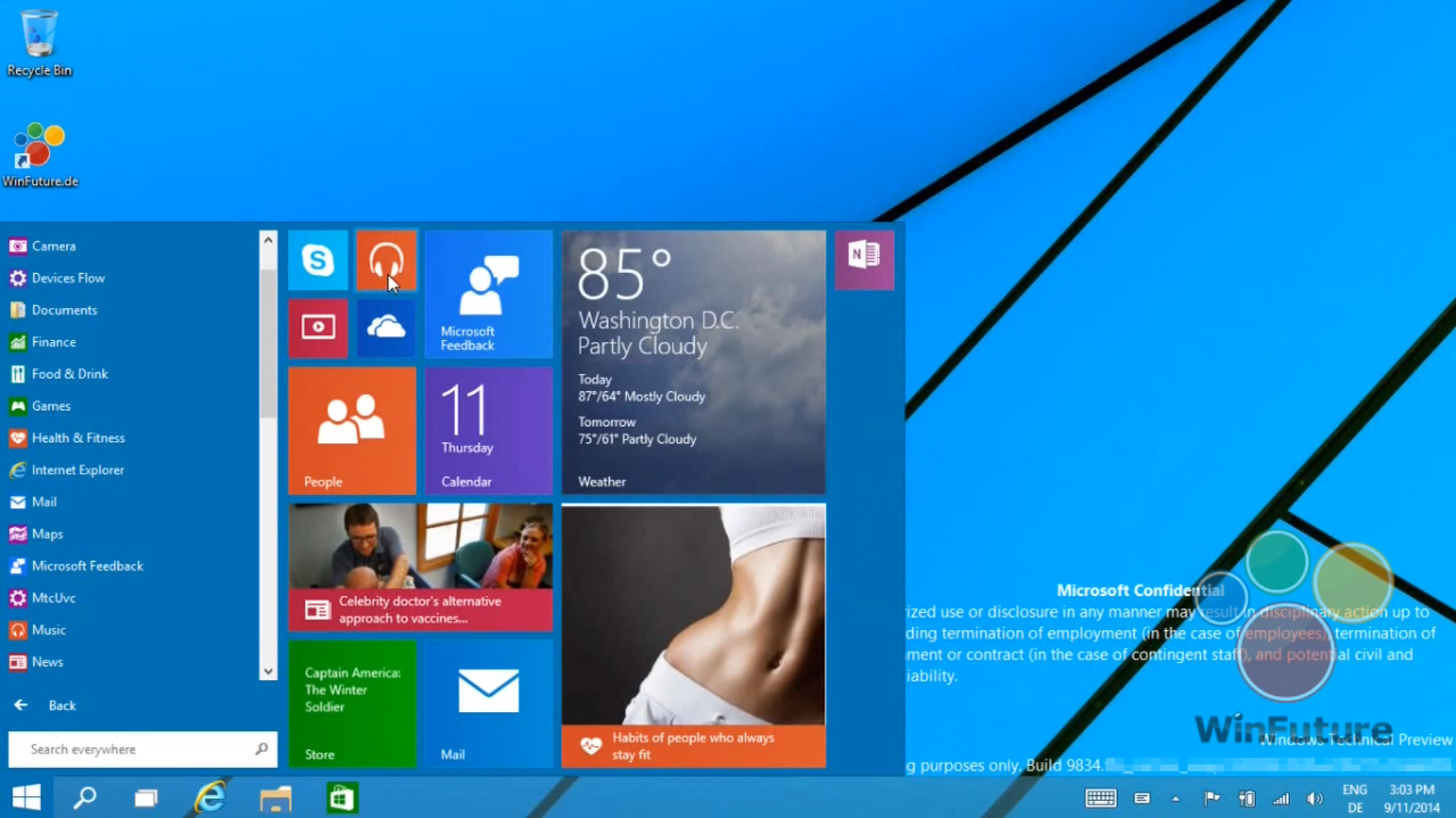
Want a proper look at the next version of Windows? WinFuture.de, the website behind the recent batch of leaked screenshots, has recorded a video showing Windows 9 Technical Preview (build 9834) in action.
The video focuses on the Start menu, and we get to see how well it all works. The tiled section on the right is unobtrusive, resizable, and disappears when not required. Microsoft has done a superb job of making a Start menu that works as you’d expect, but which is modern and beautifully presented. The video also shows Modern UI apps running on the desktop, and more.
The top of the Start menu shows the user name and clicking on it will let you change your account picture, lock the computer or sign out. A power button to the right lets you put your PC to sleep, shut it down or restart. The menu uses a folder system so you can get quick access to things like individual system tools, which is great. Apps, which are accessed through an All Apps section, can be opened, uninstalled, or pinned to Start and/or the taskbar directly from the Start menu.
You can customize the tiled portion of the menu in the same way that you can customize the Start screen. Apps can be rearranged, unpinned from Start, pinned to the taskbar, uninstalled and resized.
The best thing about the menu is it resizes intelligently. So the more apps you add to Start the larger the tiled area becomes.
The video shows the Windows calculator app in use and it looks much better running windowed on the desktop (it doesn’t fill the screen), but a native desktop version still looks much better. But that's just my personal preference. Later on we see how easy it is to switch apps between full screen and windowed modes.
Interestingly, we also get a look at the Taskbar and Start Menu Properties screen in action and it turns out there’s an option there to use either the Start menu or the Start screen. So users will in fact be able to switch between the two UIs after all.
The Start screen itself looks the same as it does in Windows 8.1, although that might change in future builds.
Overall I think it looks great -- it’s exactly what I would have hoped to see. Screenshots are all well and good but they only tell part of the story. Watch the video below and let me know what you think in the comments.
-

Watch a video of Windows 9 in action -- See the new Start menu and more
Publié: septembre 12, 2014, 9:53am CEST par Wayne Williams

Want a proper look at the next version of Windows? WinFuture.de, the website behind the recent batch of leaked screenshots, has recorded a video showing Windows 9 Technical Preview (build 9834) in action.
The video focuses on the Start menu, and we get to see how well it all works. The tiled section on the right is unobtrusive, resizable, and disappears when not required. Microsoft has done a superb job of making a Start menu that functions as you’d expect, but which is modern and beautifully presented. The video also shows Modern UI apps running on the desktop, and more.
The top of the Start menu shows the user name and clicking on it will let you change your account picture, lock the computer or sign out. A power button to the right lets you put your PC to sleep, shut it down or restart. The menu uses a folder system so you can get quick access to things like individual system tools, which is great. Apps, which are accessed through an All Apps section, can be opened, uninstalled, or pinned to Start and/or the taskbar directly from the Start menu.
You can customize the tiled portion of the menu in the same way that you can customize the Start screen. Apps can be rearranged, unpinned from Start, pinned to the taskbar, uninstalled and resized.
The best thing about the menu is it resizes intelligently. So the more apps you add to Start the larger the tiled area becomes.
The video shows the Windows calculator app in use and it looks much better running windowed on the desktop (it doesn’t fill the screen), but a native desktop version still looks much better. But that's just my personal preference. Later on we see how easy it is to switch apps between full screen and windowed modes.
Interestingly, we also get a look at the Taskbar and Start Menu Properties screen in action and it turns out there’s an option there to use either the Start menu or the Start screen. So users will in fact be able to switch between the two UIs after all.
The Start screen itself looks the same as it does in Windows 8.1, although that might change in future builds.
Overall I think it looks great -- it’s exactly what I would have hoped to see. Screenshots are all well and good but they only tell part of the story. Watch the video below and let me know what you think in the comments.
[Update] Two new videos showing the Start menu and virtual desktops can also be viewed here.
-

Leaked Windows 9 Technical Preview screens show big changes ahead
Publié: septembre 11, 2014, 5:57pm CEST par Wayne Williams
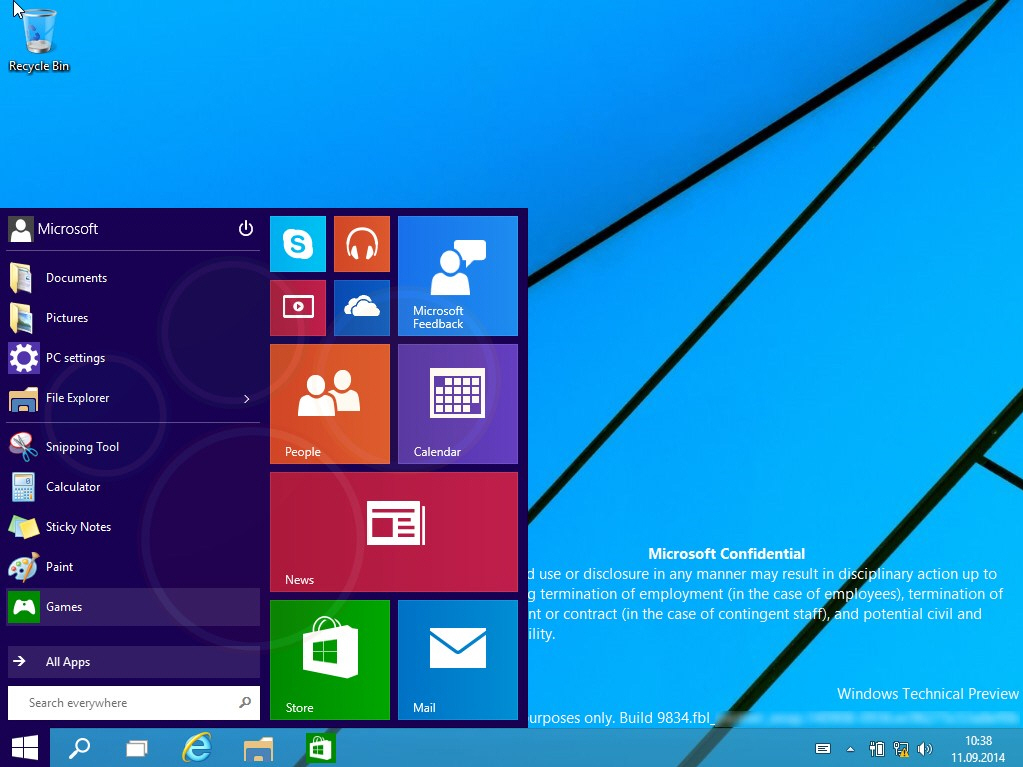
Microsoft is, according to several reliable sources, planning to announce its next operating system on September 30, with a developer preview arriving on the day or shortly after, and the finished OS expected to appear in spring next year.
We already have a good idea of what the next operating system will look like, and the changes we can expect to see (you can get up to speed on Windows 9 here) but new screens from build 9834, which was created just a couple of days ago, have surfaced on the web that reveal the new Start menu, Modern UI apps running on the desktop, notifications center, virtual desktops and more. Plus something interesting regarding the Start screen.
It appears that if you’re using the desktop, you won’t have access to the Start screen -- at all. Haters of the Modern UI will likely rejoice at this news, and if you’re using a keyboard and mouse and the new Start menu then you probably won’t miss the tiled UI, but some users will lament the fact that it’s being taken away in its entirety.
If you’re working in the desktop, the options to do anything with the Start screen will be totally grayed out in the Taskbar and Start Properties window.
We know that Windows 9 is being designed to adapt to the hardware it’s running on, but this gives us a better idea of how it will work -- traditional PCs will have the desktop and no Start screen, while tablets will have the Start screen and no desktop. (Quite how hybrids fit into this picture is anyone’s guess at the moment).
Update: A newly leaked video of Windows 9 in action shows an option to switch between Start menu and Start screen.
The screenshots also show virtual desktops in action, which is a long overdue feature I’m looking forward to.
Further details, and additional screens can be found on the WinFuture site.
What’s your view on how Windows 9 is shaping up? Excited for the new OS yet?
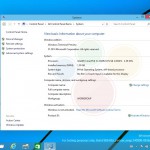
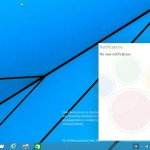
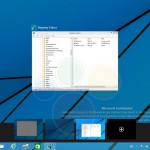

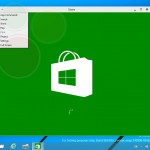
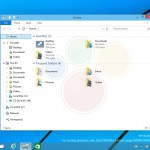
-

Focus on Lymphoma guides patients through treatment and beyond
Publié: septembre 11, 2014, 4:09pm CEST par Wayne Williams

Lymphoma is a type of blood cancer with over 60 subtypes. It is the fifth most common type of cancer (after breast, lung, colon and prostate) and has an unprecedented prevalence among young adults and adolescents -- it’s the most common form of cancer in the under 30s. It’s also the cancer that killed my mother.
The disease is still largely ambiguous to many, however, and so ahead of World Lymphoma Awareness Day (15 Sept), the Lymphoma Research Foundation is pushing its first-of-a-kind mobile app, Focus on Lymphoma, which provides comprehensive information and tools to help patients and caregivers understand the disease and manage treatment.
The app offers the most up-to-date research specific to each patient’s subtype, available clinical trials, a "doctor session tool box" that provides a single location for patients to store information from their doctor, including: medications, special instructions, dietary restrictions and so on.
The app also has a tool for physicians to monitor and encourage better compliance of their patient care plans.
Focus on Lymphoma is free and available for iOS and Android. You can get it from the App Store and Google Play.
-

Samsung pokes fun at the iPhone 6 with 'It doesn’t take a genius' adverts
Publié: septembre 11, 2014, 12:45pm CEST par Wayne Williams
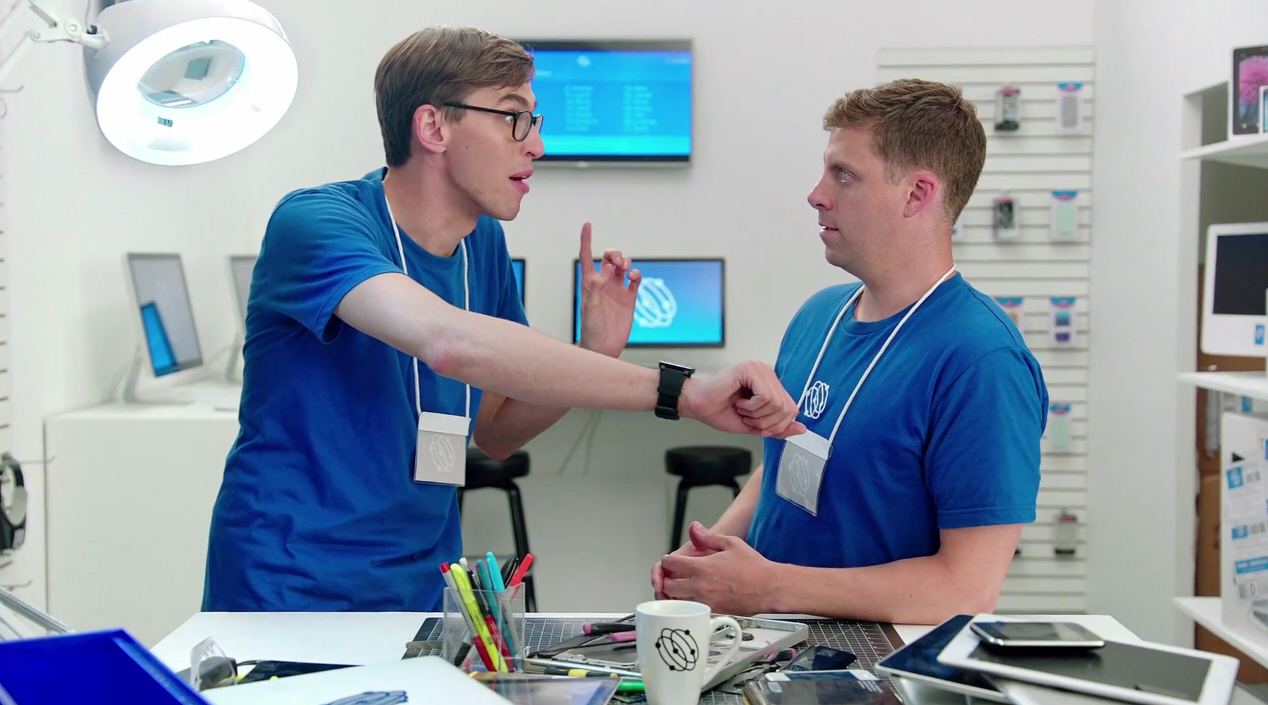
Smartphone manufacturers like to attack Apple. Microsoft is currently running a series of ads in which Siri comes off very badly compared with Microsoft’s own voice assistant Cortana, and now Samsung has released a collection of commercials making fun of the recent iPhone 6 reveal.
In the series, titled "It doesn’t take a genius", two tech guys are less than impressed with Apple’s new iPhone 6 which is lacking and dated compared to the Galaxy Note 4. It’s a similar campaign in some ways to the "A fly on the wall in Cupertino" ads that Microsoft ran, and quickly pulled, a year ago. But while those ads were ill judged and unfunny, Samsung gets the humor just right.
There are six ads in the series, and the first one pokes fun at Apple’s iPhone 6 livestream which anyone who watched it -- or rather tried to watch it -- knows was just awful. "You work in technology, you can’t handle this?" one of the guys asks, which is a very valid point.
The other ads focus on screen size, multi window, the S Pen, battery life, and wearables.
They aren’t rip-roaring funny, but each one is around 30 seconds in length and has an amusing point. You can view them below.
What do you think? Hit or miss?
-

Apple announces iPhone 6 and iPhone 6 Plus
Publié: septembre 9, 2014, 7:29pm CEST par Wayne Williams
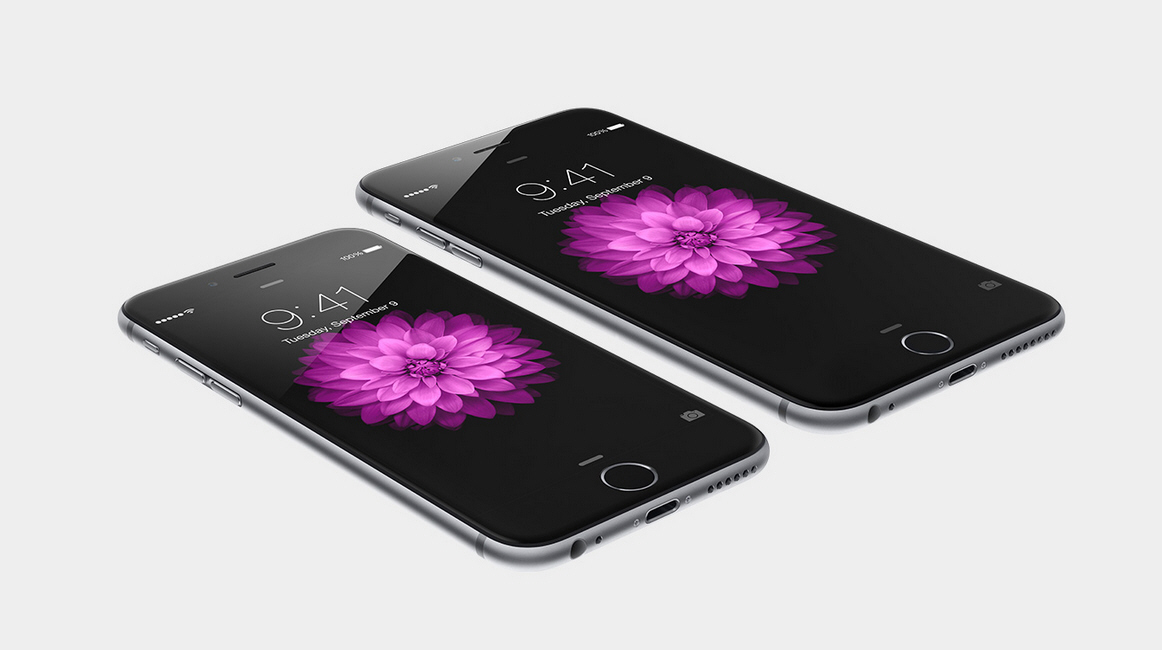
Apple’s iPhone 6 launch was hotly anticipated, but anyone tuning into the live stream had to initially endure stuttering video and a lovely, but rather annoying Chinese or possibly Japanese woman talking over the top of things. Apple might make great hardware and software, but it really needs to work on its live streams.
As expected, the rumors and leaks turned out to be spot on. Apple is indeed launching two new devices -- the iPhone 6 and the iPhone 6 Plus, both of which are larger than the existing iPhone 5s.
The iPhone 6 has a 4.7 inch (1334×750) screen, and the iPhone 6 Plus is much larger with a 5.5 inch (1920×1080) display. Both offer what Apple is calling "Retina HD" which is good, but Samsung's flagships -- the Galaxy S5 and Galaxy Note 4 -- both offer higher resolutions.
The devices are super thin -- 6.9mm and 7.1mm, respectively -- and the glass curves into the body, which looks very smart.
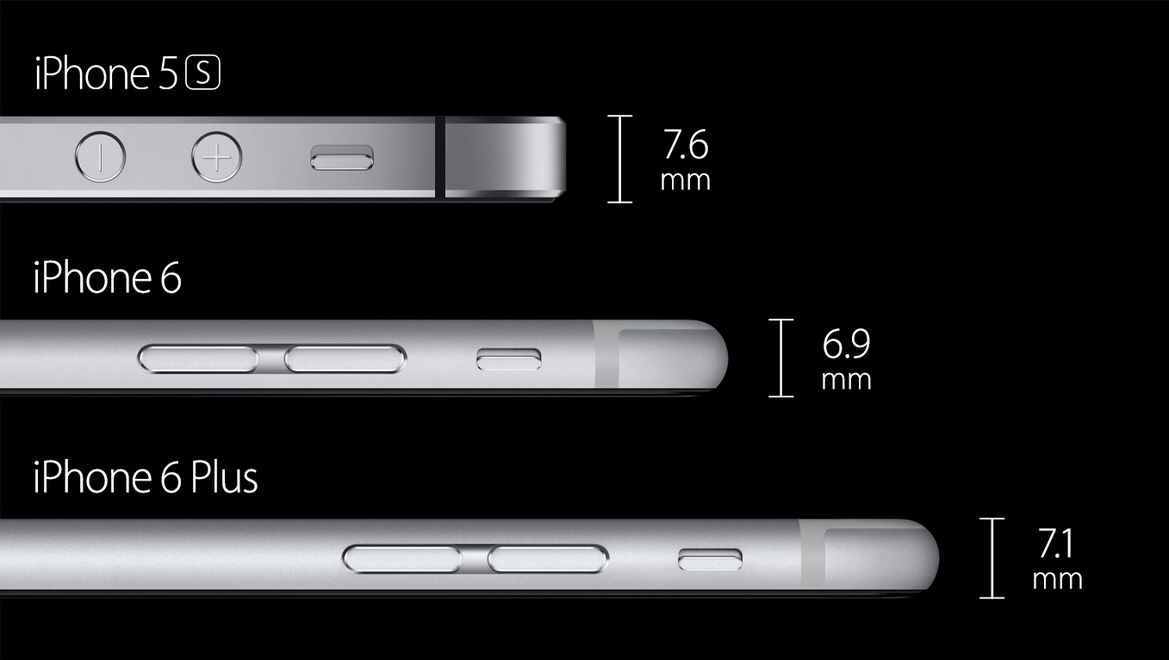
Both handsets are powered by a new A8 processor. Apple says this offers 25 percent faster processing power and is 50 percent faster at rendering graphics. A new M8 motion processor promises accurate fitness tracking -- it can estimate distances -- and there’s an on-board barometer for measuring altitude through air pressure. Apple says this will help determine if someone is running up a mountain or along a flat surface, like a road.
The rear cameras on both phones will remain 8 megapixels, which will disappoint some people, although Apple says it has improved the image quality. The cameras now offer new Focus Pixels for phase-detection and autofocus, a feature found on most SLR cameras, and also the Samsung Galaxy S5. The 6 Plus' camera will also offer optical image stabilization. Faster frame rates up to 60fps for 1080p video and 240fps for slo-mo, as well as continuous autofocus, cinematic video stabilization and time-lapse video are possible.
There's a new FaceTime HD camera on the front, with an all-new sensor and a larger f/2.2 aperture that apparently allows in 81 percent more light than its iPhone 5s predecessor.

The thing that most people have requested is better battery life, and the new iPhones deliver that. Both devices also offer 802.11ac Wi-Fi support, which promises speeds of up to three times faster than before, and LTE up to 150Mbps, from more than 200 carriers around the world. High-quality voice calls over LTE (VoLTE) as well as Wi-Fi calling is offered (through select carriers, naturally).
Both phones have Apple Pay, a new way to securely pay for physical goods and services in stores or apps. Users just need to hold the device near a contactless reader while keeping a finger on the Touch ID button. No need to unlock the phone or launch an app. This will be available to US customers from next month.
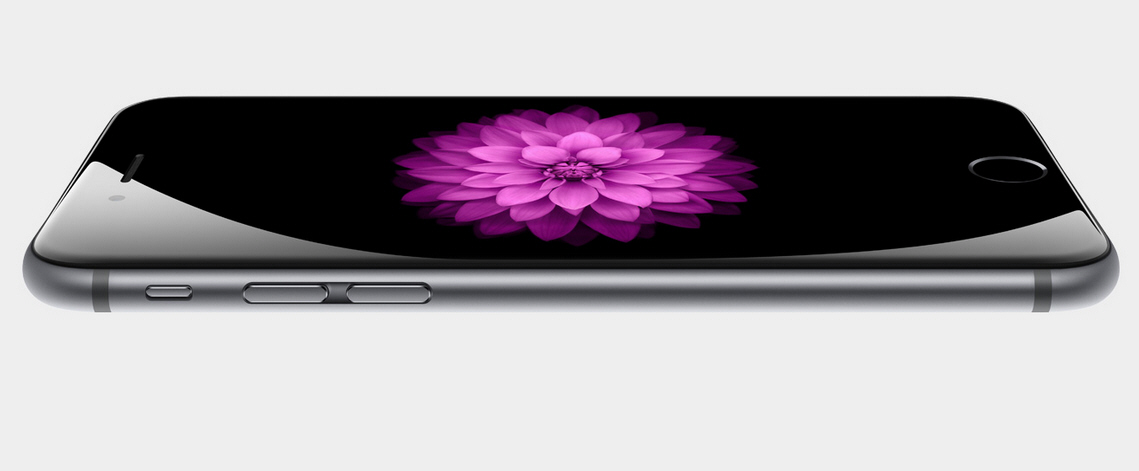
As to prices, 16GB iPhone 6 will cost $199 on contract ($299 for 64GB, $399 for 128GB), while the 16GB iPhone 6 Plus will cost $299 (or $399 for 64GB, $499 for 128GB). The price of the iPhone 5s has been reduced accordingly.
Pre-orders will start on September 12, with availability from September 19. The iPhone 6 will be available in gold, silver and space gray. New leather cases will be available in black, soft pink, olive brown, midnight blue and (RED) for $45 for iPhone 6 and $49 for iPhone 6 Plus. There will also be silicone cases in black, blue, pink, green, white and (RED) for $35 for iPhone 6 and $39 for iPhone 6 Plus.
"iPhone 6 and iPhone 6 Plus are the biggest advancements in iPhone history," said Tim Cook, Apple’s CEO. "The iPhone is the most loved smartphone in the world with the highest customer satisfaction in the industry and we are making it much better in every way. Only Apple can combine the best hardware, software and services at this unprecedented level and we think customers are going to love it".

-

Watch the Apple iPhone 6 launch on a Windows PC
Publié: septembre 9, 2014, 6:52pm CEST par Wayne Williams

Apple always streams its major events live, but restricts them to existing users of Apple products. If you want to watch today’s imminent launch of the iPhone 6 and, possibly, a new smartwatch, you need to be viewing on Safari 5.1.10 or later on OS X v10.6.8 or later; Safari on iOS 6.0 or later. Streaming via Apple TV requires second or third-generation Apple TV with software version 6.2 or later.
However, there is a way around this.
Download and install VLC Media Player, open the program, and click on Media at the top left. Go to Open Network Stream and paste in the network URL of the live Apple event.
This is: "http://p.events-delivery.apple.com.edgesuite.net/14pijnadfpvkjnfvpijhabdfvpijbadfv09/m3u8/atv_mvp.m3u8".
The broadcast is live now, so if you're interested in seeing what Apple has to offer fire up VLC Media Player and tune in.
Photo Credit: 1000 Words/ Shutterstock
-

Is the NSA behind the Fappening nude celebrity photo leaks?
Publié: septembre 9, 2014, 12:48pm CEST par Wayne Williams

A Reddit user has posed an intriguing question -- "What if the Fappening leaks is the nude collection Snowden said gets passed around between workers of the NSA?"
Sounds ridiculous, sure, but he’s referring to a claim Edward Snowden made in a seven hour long interview with the Guardian a couple of months ago. Snowden said, "You've got young enlisted guys, 18 to 22 years old. They've suddenly been thrust into a position of extraordinary responsibility where they now have access to all of your private records". According to Snowden, these people often "stumble across something that is completely unrelated to their work", such as photos of a person or persons in "a sexually compromising situation".
In the Showerthoughts subreddit, the user, Stoet, muses "That would explain why the leaks seem to be coming from anywhere: iCloud, Dropbox, etc. They [the NSA] have built in backdoors to those systems and more. And the targeted celebrities are all American, right?"
The leaked celebrity images, which include naked pictures of Jennifer Lawrence, Kate Upton, Rihanna, Kaley Cuoco and Mary Elizabeth Winstead, appear to have been collected over a period of time. Mary Elizabeth Winstead stated the photos of her in the collection were deleted some time ago, and it’s not too much of a stretch to think if NSA employees are indeed looking at naked photos, that compromising shots of celebrities would be a prized find, and something someone might want to hold on to...
What’s your theory on the source of the leaks?
Photo Credit: murielbuzz/Shutterstock
-

Why I'm hoping Apple's iWatch will be everything Android Wear isn't
Publié: septembre 8, 2014, 5:11pm CEST par Wayne Williams
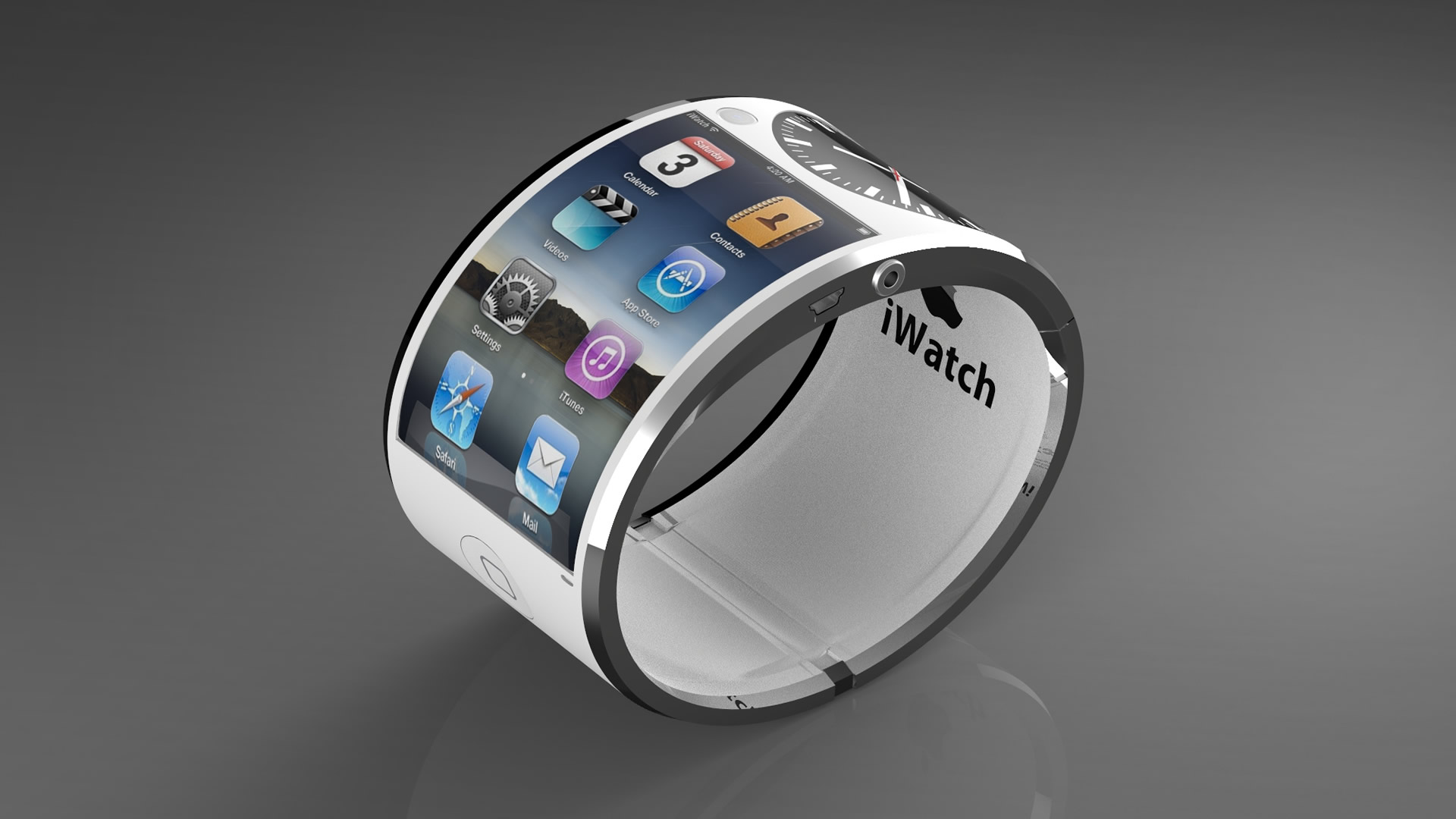
Many of my friends don’t wear watches. Most prefer to whip out their phones when they want to know the time. I do wear a watch, and it’s partly for convenience (looking at my wrist is quicker than pulling my phone out), and partly just because I like wearing a watch.
Although I own numerous watches, my timepiece of choice is an Omega Seamaster Professional. It’s good looking, solid and reliable, and I cherish it. I’m not adverse to the idea of wearing a smartwatch, the problem is I’ve yet to see one that doesn’t appear cheap and/or ugly.
There are a wide range of Android Wear watches beginning to arrive, and they’re starting to look better and gain in functionality, but mostly they just offer the same unexciting range of features.
Although I own a square watch (the Breil Milano BW0579), I prefer round watches, so the Android devices that appeal the most to me are the circular Moto 360 and the LG G Watch R. They look different, but offer the same features and poor battery life as other Android Wear devices. My Omega is self-winding so I just put it on and forget about it. The idea of having to charge my watch daily is about as appealing as the idea of charging my shoes.
Although I’ve yet to spend any time with a smartwatch (pun intended), I’ve heard they’re difficult to read in bright sunlight (as are many smartphones), which makes them even less appealing to me.
So what am I hoping for from the iWatch? A device that looks good, first and foremost. Apple knows how to design and produce premium products, so it isn’t likely to offer up a tacky looking plastic product. Decent battery life would be a killer feature (it needs a wireless charging system), and a range of apps that actually work well on the wrist would be great too.
A standalone watch that isn’t tethered to the iPhone in some way would be my preferred choice, but so long as the watch offers decent functionality, that’s not a deal breaker for me.
It’s said the iWatch will include a new payments system that will let you pay for products -- like your morning cappuccino -- using it, which could be very handy.
What I’m mostly looking for is a watch that is everything the current crop of Android Wear devices aren’t. Hopefully Apple won’t disappoint when -- or rather if -- it finally reveals its long rumored wearable tomorrow.
Image Credit: Jivald
-

Amazon holding a one-day flash sale on SanDisk memory products
Publié: septembre 8, 2014, 3:40pm CEST par Wayne Williams
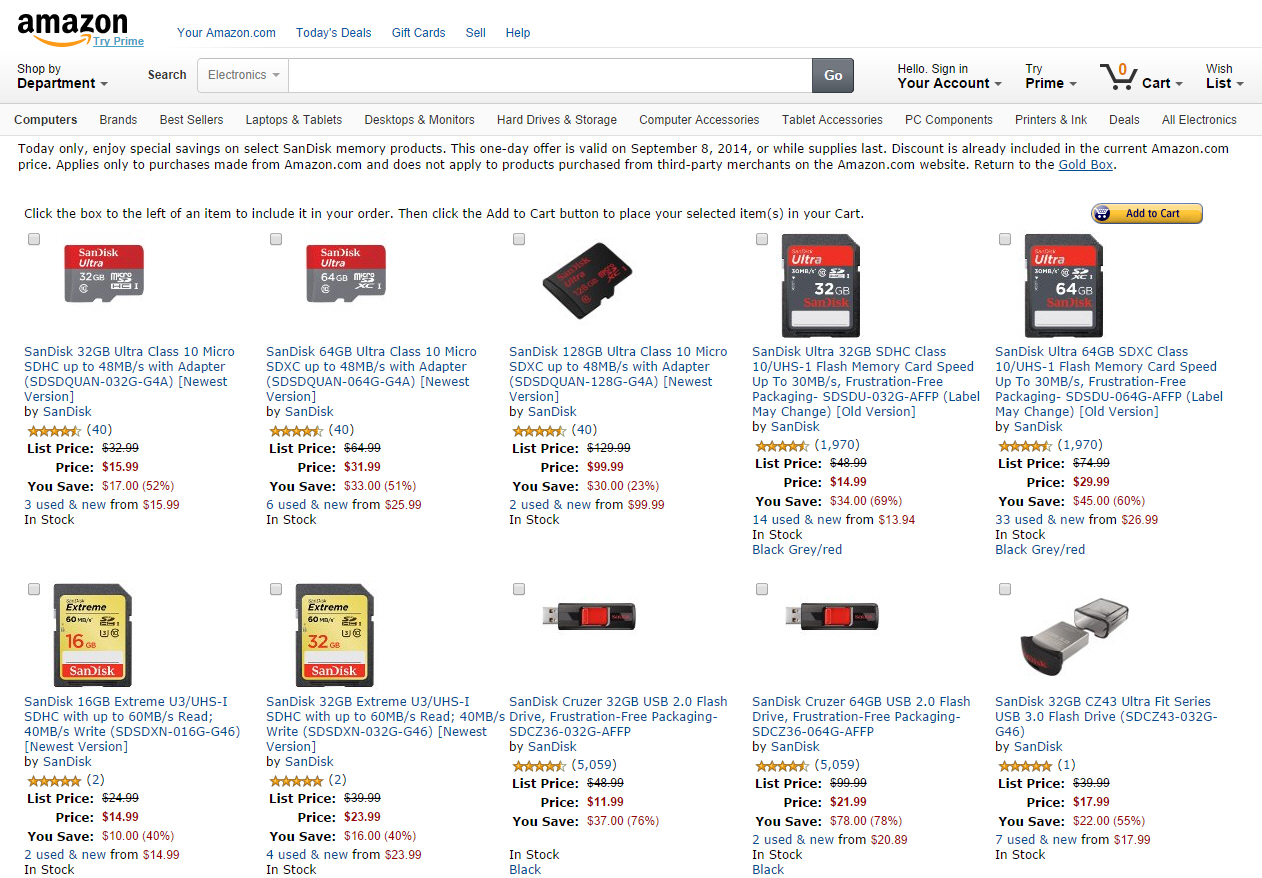
If you’ve been holding off buying a memory card, flash drive or SSD, now is your chance to snap up a SanDisk bargain.
Today, and today only, Amazon.com has slashed the price on a range of SanDisk products, and there are some serious bargains to be had. SanDisk makes great memory products (most of the SD cards I use -- with the notable exception of an Eyefi Mobi one -- are from SanDisk).
Savings range from 23 percent off a 128GB Micro SDXC card to a whopping 78 percent off a 64GB USB 2.0 flash drive.
You can save $100 (43 percent reduction) off a SanDisk Extreme PRO 240GB SSD drive too.
Browse the selection of available products here, but remember the sale is only on today and some products may go out of stock.
-

Gartner makes the silliest claim yet regarding Internet of Things adoption
Publié: septembre 8, 2014, 2:31pm CEST par Wayne Williams
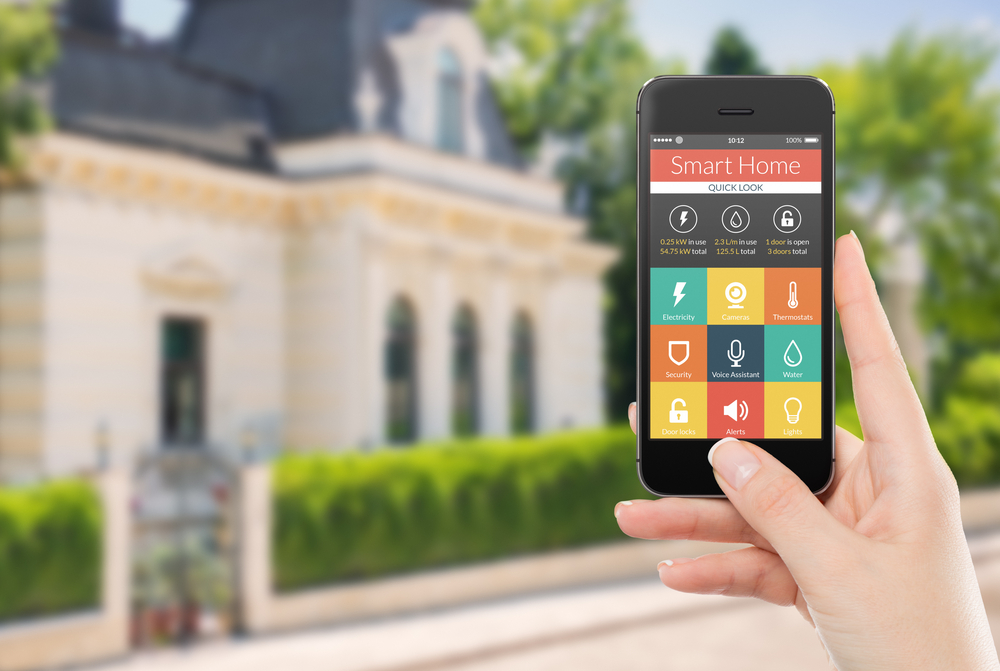
Companies are pouring a lot of money into creating connected hardware, but it will be some years before the Internet of Things really makes it big. In fact, a recent survey showed that most consumers haven't even heard of the term, let alone purchased any smart appliances yet.
A fortnight ago, Acquity Group (part of Accenture Interactive) released its 2014 State of the Internet of Things Study, and predicted that 69 percent of consumers will own an in-home IoT device by 2019. Today, Gartner makes a much bolder claim, stating that by 2022 the typical family home could contain more than 500 smart devices. This is one of Gartner's stupider predictions.
"We expect that a very wide range of domestic equipment will become 'smart' in the sense of gaining some level of sensing and intelligence combined with the ability to communicate, usually wirelessly", says Nick Jones, vice president and distinguished analyst at Gartner. "More sophisticated devices will include both sensing and remote control functions. Price will seldom be an inhibitor because the cost of the Internet of Things (IoT) enabling a consumer 'thing' will approach $1 in the long term".
That's fair enough, and difficult to disagree with. But more than 500 smart devices? It's possible, I suppose, if Gartner is counting individual smart light bulbs and plug sockets, but I don't see consumers rushing to replace all of their existing 'dumb' appliances with 'smart' ones unless there's a good, solid reason for doing so.
"Virtually all smart domestic objects will contain some type of sensor, and some will contain many sensors. Collecting, analyzing and monetizing the information collected by smart products will be central to many IoT-based digital business models", Gartner says, gazing into its crystal ball. But this statement instantly underscores the reason why many people won't want to buy IoT products. We share enough personal information with web companies as it is, without appliance makers getting in on the game too.
While there is a clear benefit to some appliances becoming smarter -- your thermostat, and fridge, to name just two -- many home appliances won't actually benefit from this type of upgrade. I personally have less than zero interest in a smart toaster, for example, and have no regrets at all about swapping my Nest smoke detectors for 'dumb' models which I can't connect to via an app, but which (in my personal experience) do a much better job of detecting smoke and fire. In the future that may, and likely will, change, but widespread adoption of IoT devices is going to take longer than a decade because most people simply won't see the need to swap all of their simple appliances for more complicated ones.
Gartner sees home products becoming more usable with the addition of gesture or voice control, but seriously, if you have in excess of 500 smart devices in your home, trying to control just one with a gesture or spoken command is going to be a nightmare. The Xbox One had a problem where a television advert for it was causing the console to turn on -- and that's just one device. You'll likely have to stand right in front of the item you want to interact with to prevent something else leaping into life, so why not just press a button to work it, instead?
The Internet of Things is coming, and in the next decade smart appliances will begin to make their way into our lives. But over 500 smart devices in the typical family home? Utter headline grabbing tosh.
Photo credit: Alexey Boldin/Shutterstock
-

Just how innovative was each iPhone release?
Publié: septembre 5, 2014, 4:18pm CEST par Wayne Williams
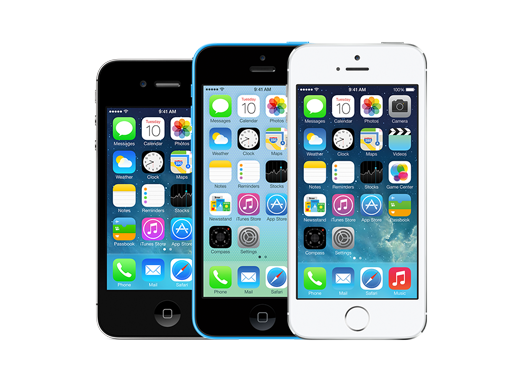
The unveiling of the iPhone 6 is nearly upon us, and while we can be pretty sure the new device (or one of the devices at least) will be much larger, we won’t know about any other features until Apple reveals them next week.
The original iPhone was so revolutionary that the world expects Apple to produce something amazing with each new iteration, which is, of course, an unrealistic expectation. However, the firm has introduced plenty of innovative features to its smartphone over the years, including the App Store, Siri, and Touch ID.
In preparation for the introduction of the new phone, FinancesOnline.com has put together an infographic looking at just how much innovation was actually in each iPhone model, and reveals what people want from the new iPhone 6. Naturally, better battery life is key among the requests.
The infographic also charts the growth in global iPhone sales since launch.
I own an iPhone 5s, which I love, and am hopeful the iPhone 6 will include enough new innovations to make upgrading worthwhile. A super-sized screen is probably the feature I require least.
What new and improved features are you hoping to see in the iPhone 6?

-

The evolution of the computer -- from 1613 to 2013
Publié: septembre 5, 2014, 12:04pm CEST par Wayne Williams
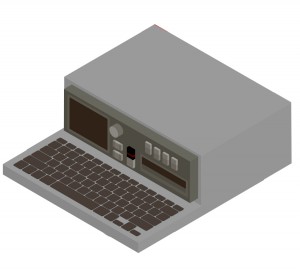 My first computer was the Sinclair ZX81 which, unsurprisingly, came out in 1981. It had 1kB of memory (but this could be expanded with the addition of a 16kB RAM pack) and a monochrome display. Compare that machine with today’s computers and tablets (and smartphones for that matter), and the advancement is clearly staggering.
My first computer was the Sinclair ZX81 which, unsurprisingly, came out in 1981. It had 1kB of memory (but this could be expanded with the addition of a 16kB RAM pack) and a monochrome display. Compare that machine with today’s computers and tablets (and smartphones for that matter), and the advancement is clearly staggering.The history of the computer is littered with milestones. In 1822 Charles Babbage began work on the Difference Engine, the first automatic computing engine. In 1936 Alan Turing submitted a paper describing a device that could be programmed using symbols on tape. In 1953 IBM released the first mass-produced commercial computer, and in 1976 Steve Jobs and Steve Wozniak created the Apple I.
Ebuyer has put together an infographic detailing the history of the computer from the origins of the word to the introduction of modern-day tablets. While most of the major firsts and important moments are included, some are missing (such as any reference to the home micro boom of the 1980s).
The Infographic offers up plenty of interesting nuggets of information, including that IBM’s first PC, the IBM 5150 PC, cost $1,565 at launch, which is equivalent to approximately $4,010 in today's money.
It's a very interesting read that makes you appreciate just how far things have come, particularly in recent years.
What was your very first computer?

-

Is your partner spying on you?
Publié: septembre 4, 2014, 1:02pm CEST par Wayne Williams

Google knows a lot about you, and the government may be snooping on your activities, but it's your significant other who may well be the one spying on you the most, according to a new survey by security firm Avast.
The company surveyed 13,132 adults in the United States and found that one in four women and one in five men regularly checked their partner's smartphone. Most of the women were doing so purely to be nosy, but a quarter of married women admitted to looking for evidence of infidelity.
Men were similarly untrusting, and most said they checked their wife or girlfriend's phone to make sure she wasn't being unfaithful.
According to the findings, this snooping was often justified with seven out of ten women and more than half of men discovering evidence of betrayal. This should come as no surprise as a couple of months ago software company IObit commissioned a survey into the personal content stored on smartphones, and found the majority of respondents had something they wanted to keep secret from their partners.
Avast's survey also found that women are 20 percent more likely than men to confront their partner with the evidence gleaned as a result of their snooping.
Of those people who admitted to looking at their partner’s phone, over half believed their partner was snooping on them too.
A passcode can help keep the data on your phone private, but Avast found that 41 percent of men didn't bother with this simple security step, and neither did 33 percent of women. And those who did use a PIN weren't that secure anyway, as a significant number had shared it with their partner in the past...
Photo Credit: In Tune / Shutterstock
-

Too poor to own an aircraft? Don't worry, a new app will let you hire a private jet
Publié: septembre 3, 2014, 5:55pm CEST par Wayne Williams
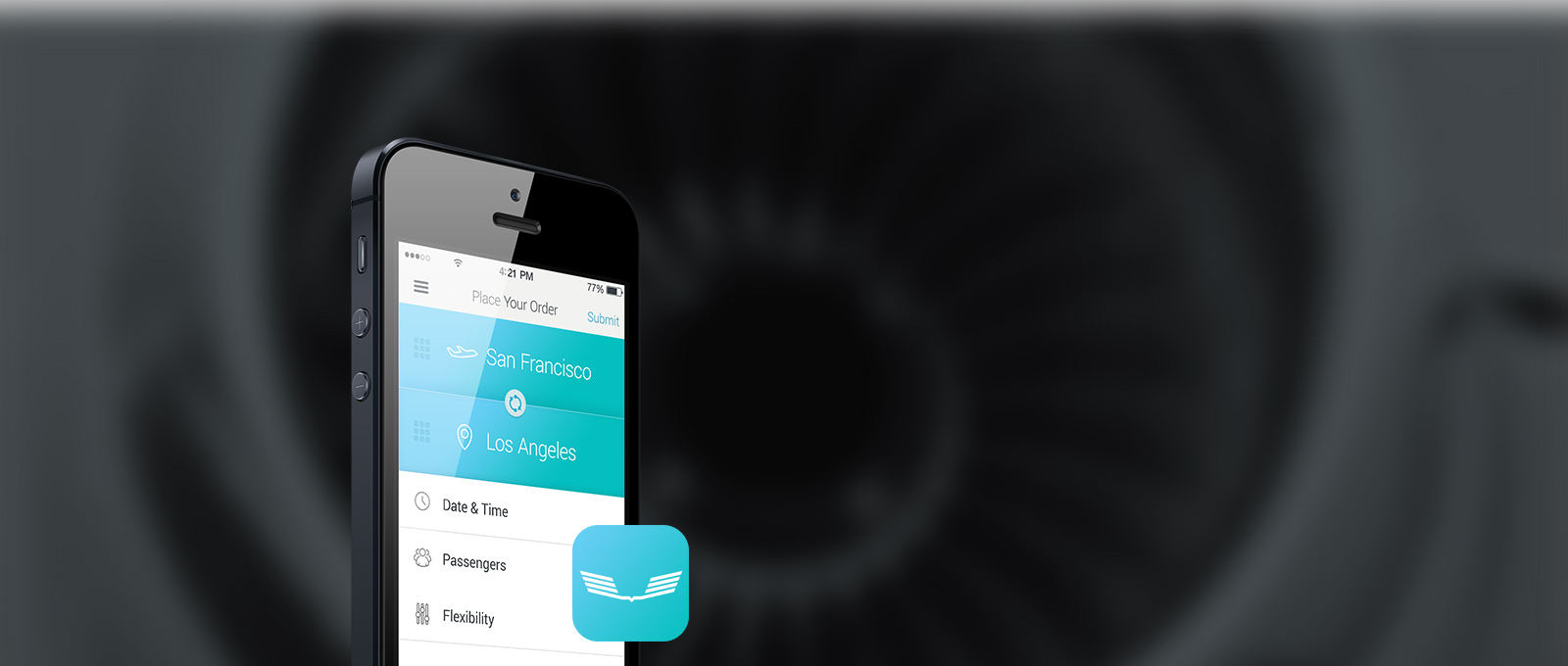
JetMe is a new app for iOS (Android coming soon) that wants to be like Uber or Airbnb, except instead of letting you book a ride or a place to stay, it lets you book a private jet.
I know what you’re thinking -- why book a private jet when you can just use your own aircraft -- but believe it or not, there are some people who don’t have their own planes (because they prefer to travel by yacht, for example). For those people, JetMe might be the perfect solution.
In all seriousness, there are benefits to booking a private jet, including avoiding other people, and the hassle of getting to the gate, and the cost of private jet flights are often on par with business class airline tickets.
The free app lets travelers search for, book, and pay for private jet flights (the full price is shown in the app) and there are no membership fees, costs for facilities, managers, brokerage and handling companies, and non-automated order processing costs to worry about.
Private jets often immediately return to their point of origin in order to avoid expensive airport parking fees, and JetMe aims to take advantage of these low load or "empty leg" flights, something it describes as a "win-win for travelers and jet owners".
At the moment, JetMe only allows you to book flights from the San Francisco Bay Area to Greater Los Angeles Area, but more cities will be added shortly.
"You don’t have to be a rock star to fly like one," says Yuriy Romanyukha, CEO, JetMe. "When the idea for JetMe struck, the other founders and I sealed ourselves in our apartment and worked tirelessly, the whole time envisioning how we could deliver affordable luxury air travel experiences better than any service out there so far. Twelve hours later, the sun was coming up, and we had our prototype. Now we’re open for business, with plans to expand across the United States and beyond, including back to our native Ukraine, JetMe’s birthplace".
If you can’t afford to hire a private jet by yourself, there are options for sharing the flight with other passengers and saving up to 50 percent of the cost.
iPhone owners can grab the app now. Android and web versions will be available shortly.
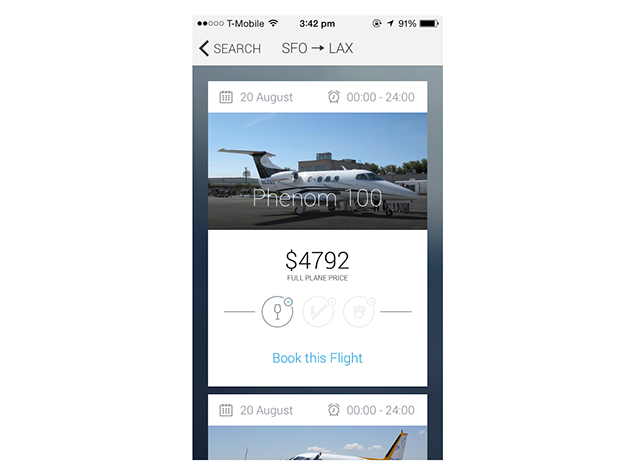
-

Watch the Galaxy Note 4 launch here LIVE
Publié: septembre 3, 2014, 2:07pm CEST par Wayne Williams

Samsung is set to announce the Galaxy Note 4 at its Unpacked 2014 Episode 2 press event today. Mihaita Bamburic has already covered what to expect from the new Android phablet and you can read his predictions here.
The new device will likely be powered by a much faster processor, and offer a higher screen resolution (but ship with the same 5.7-inch display size found on the Galaxy Note 3), and better quality front and rear cameras.
Samsung will be unveiling the device at simultaneous events in Beijing, Berlin and New York, and our own Brian Fagioli will be reporting directly from the NYC event.
If you want to be the first to find out about the new device, the good news is Samsung will be livestreaming the event, and you can watch it here.
Proceedings start at 9am EDT/6am PDT/2pm BST.
-

Lumsing E-DR15 car charger: Splitting one cigarette lighter socket into three [Review]
Publié: août 31, 2014, 4:00pm CEST par Wayne Williams
![Lumsing E-DR15 car charger: Splitting one cigarette lighter socket into three [Review]](http://betanews.com/wp-content/uploads/2014/08/car-charger-600x431.jpg)
A few years ago, the very concept of a three port extender for your car's cigarette lighter socket would have caused some raised eyebrows. Even if you were in a car packed full of chainsmokers, three lighter sockets would be deemed excessive.
Of course, these days, the lighter socket is less for lighting cigarettes and more for powering devices, so Lumsing's power splitter serves a clear purpose.
What it does is extend a single 12-24V cigarette lighter port to three (for a total output of 70w), and includes a USB 5V output for good measure. So you can charge up to four pieces of equipment at the same time. The manual makes some suggestions -- Sat Nav, air purifier, car charger, Bluetooth device, FM transmitter, iPhone, Android phone, MP3 player, Kindle, iPad... and so on.
The appliance is 3.70 x 1.61 x 1.30 inches/9.39 x 4.08 x 3.30 cm in size, weighs 3.60oz/102.05 grams, and is made of white plastic and stainless steel. It comes with two sticky pads on the bottom, so you can affix it firmly into position wherever you like. The cable is long enough to give you plenty of positioning room.
To use it, you just need to plug the end into your vehicle's cigarette socket. An LED will light up indicating there's power, and you can plug in your other devices. The LED is perhaps a bit too bright and distracting when driving at night, but you can always cover it up if that's a problem.
Not everyone will have a need for the E-DR15, but it will definitely come in handy for anyone planning a long journey in a car packed full of gadget loving passengers.
This model is available in white or gray, and although it's priced at £20 on Amazon.co.uk (it's out of stock at Amazon.com), it is currently on sale for just £6.99.
-

Lumsing PBJ-6200 Power Bank: A stylish phone charging solution [Review]
Publié: août 30, 2014, 1:00pm CEST par Wayne Williams
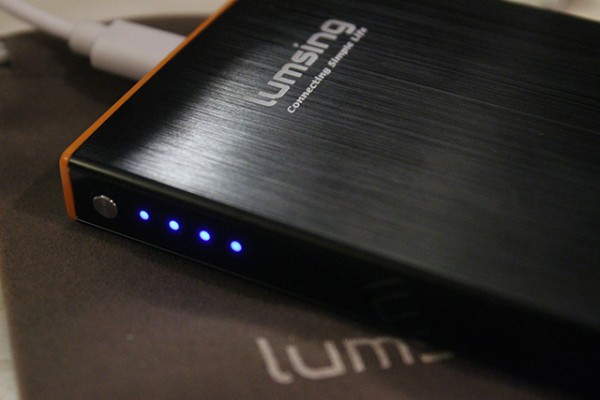
I charge my iPhone 5s every night -- it's pretty much a standard routine. Although people moan about the iPhone's battery life, I have no complaints. In fact my old Samsung Galaxy S III needed charging more regularly. But every so often a little extra battery boost is required, which is fine if I'm at home, but less convenient when I'm out and about (and I have no interest in being a wall hugger). This is where an external battery pack can come in handy.
Lumsing's PBJ-6200 Power Bank has already proven to be a life saver in the couple of weeks I've had it. The device is roughly the same dimensions as my phone -- 4.88x 2.64 x 0.51 inches (124 x 67 x13 mm) -- and has a 6,000mAh capacity, which is enough to charge my iPhone about three times (a Galaxy S4 twice, or an iPad mini once).
It weighs 6.49 oz/186g and offers a 1.5A microUSB port for charging (it comes with a cable for connecting to a PC or USB adapter, but there's no wall charger included), and two USB out ports -- one 1A port and one rated at 2.1A, so it's suitable for charging all manner of devices. It's even powerful enough to charge two devices at the same time.
It's stylishly designed, with an aluminum alloy shell, and four blue LEDs on the side which indicate the charge level when you hit the silver power button. Four lit LEDs equals 100 percent charge, three and one flashing is 75-100 percent, two and one flashing is 50-75 percent, one and one flashing is 25-50 percent and one flashing is less than 10 percent.
Charging the Power Bank is just a matter of plugging it in and clicking the power button. Two LEDs flash sequentially, showing it's charging.
Available in black and orange, or silver and blue, it's priced at £50 on Amazon.co.uk (it's out of stock at Amazon.com), but is currently selling for just £14.99.
While it's difficult to get too excited about a battery pack, the PBJ-6200 Power Bank is very stylishly designed, and smartly packaged. And, it comes at a price it's hard to argue with. If you need to charge a phone or tablet when you're away from a plug socket, it offers the perfect solution.
-

Everything you need to know about Windows 9 ('Threshold')
Publié: août 26, 2014, 4:55pm CEST par Wayne Williams
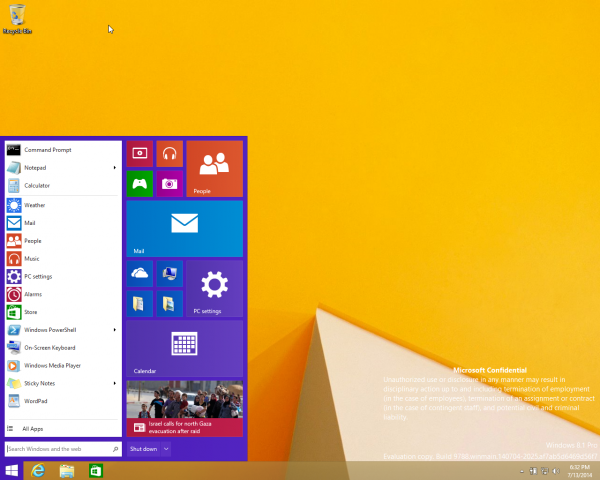
At launch, Windows 8 was a mess. It was a brave and -- arguably -- necessary attempt by Microsoft to re-invent its operating system and keep it relevant as the world transitioned towards mobile computing, and tablets in particular. But the first release was seriously half-baked, and left many Windows users scratching their heads in confusion. Windows 8.1 improved things massively, and Update made the OS even better, especially for previously neglected keyboard and mouse users. But Windows 8.x’s poor market share tells a clear story -- the OS has flopped badly, and it’s time for Microsoft to chalk it up to experience and move on.
Windows 9 (aka Threshold) is expected to be the operating system that Windows 8.x should have been, just as Windows 7 was the OS Vista should have been. According to The Verge, we’ll get our first proper look at the next Windows iteration on September 30, but we already have a fairly good idea of what to expect.
The biggest change will of course be the re-introduction of a Start menu for keyboard and mouse systems. We’ve seen leaked screenshots of this (the one above being an example), and it looks good. It takes the Windows 7 Start menu and adds tiles from the Windows 8.x Start screen, to produce a hybrid menu that offers the best of both worlds. The menu will only be available to desktop users (obviously), and they’ll be able to toggle the tiled part on or off, which will please anyone who really, really hates the look of the tiled UI.
The divisive Modern UI will still exist for PC users (well those who want it), but be much more closely integrated with the desktop. Users will be able to run Modern apps in windowed mode on the desktop, which is definitely a step in the right direction.
Windows 8.x’s Charms Bar -- the menu that pops up on the right hand side of the screen when you hover your cursor in the bottom right corner -- is to be removed from the desktop. Microsoft will probably keep it on tablets as it works very well there.
Multiple virtual desktops are expected to make an introduction in Windows 9, a handy feature Linux (and Unix) users have enjoyed for a while. This is a great move from Microsoft, and shows the company’s renewed commitment to power users.
Microsoft's digital assistant Cortana is set to be added to Windows 9 too (Siri is expected to be added to OS X at some point in the future as well). In early leaked builds she's accessible from the taskbar, but that could well change.
Expect to see numerous other UI and cosmetic tweaks as well -- Microsoft needs to distance Windows 9 from its predecessor, and a fresh coat of paint will help here. Don't be too surprised if taskbar icons look and behave more like mini live tiles.
With Windows 8, Microsoft gambled on a future where we all downed our keyboards and mice and switched to touch systems. Falling PC shipments and rising tablet adoption made that look like a fairly safe bet, but fast forward to now, and tablet sales are dropping and PC sales are stabilizing, so Microsoft has to reevaluate its focus.
There’s a large Windows user base out there who feel Microsoft chose to abandon them when it rolled out an operating system aimed at an entirely different audience, and Microsoft has a chance to woo them back with Windows 9. From what we’ve seen so far, it looks as if the tech giant is making all the right moves.
The Verge says Microsoft is set to unveil Windows 9 at a press event on September 30 (although the actual date may change, and the official OS name may not be mentioned then either), with a preview version made available to developers on the day or slightly later. The finished OS is expected to ship in spring 2015, although I wouldn't be surprised if it slips into the summer or beyond.
I love Windows 8.1 but I have very little to do with the Modern UI on my desktop system, so I’m genuinely excited to see what Microsoft is working on. What about you?
-

The story-driven Superhero Workout app makes getting fit super-fun
Publié: août 22, 2014, 9:21pm CEST par Wayne Williams
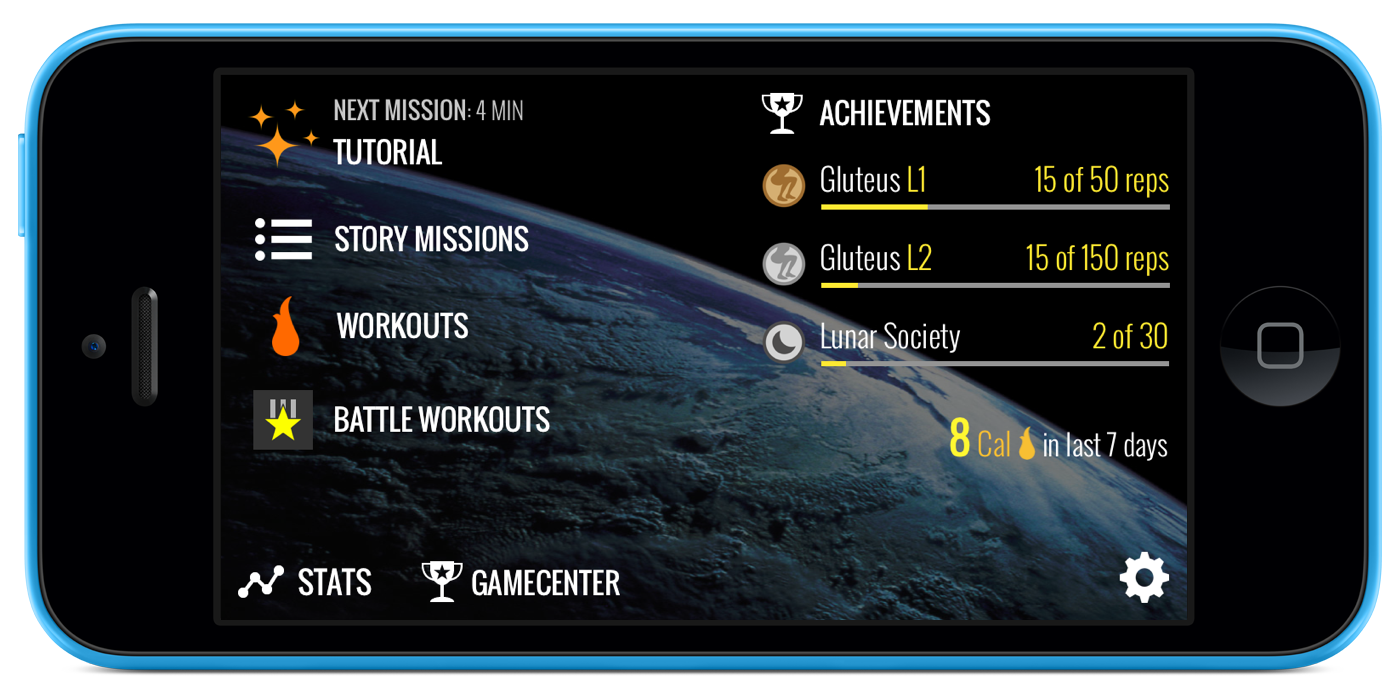
There are hundreds of fitness apps available for iOS and Android and, I suspect, like fitness equipment, many people buy them with the best of intentions, but then never use them. I’m a prime example. Although I use running apps like Zombies, Run! and Runtastic on a regular basis, most of the workout apps I own see far less action (the one exception being Runtastic PushUps which I use daily).
However, Six to Start -- the creator of story-driven apps like Zombies, Run! and The Walk -- has come up with a workout app that people will actually want to use. Superhero Workout uses camera-based motion tracking to record the reps as you exercise, and marries it with a thrilling sci-fi story. Punches become plasma blasts, abdominal crunches charge your AEGIS One battlesuit’s reactor, and you can brace yourself from incoming debris with a wall sit...
The game includes 20 missions (each lasting between 17-25 minutes) and 12 high-intensity workouts of varying lengths. There’s also an 'endless' interactive Battle Workout. Over 40 bodyweight exercises, including punches, pushups, jumping jacks, burpees, power squats, and tricep dips, are tracked in the game. You don’t need any special equipment, but some exercises do require use of a wall or chair.
Adrian Hon, CEO of Six to Start, said, "We know how difficult it can be to motivate yourself to work out every day, so we created a new kind of app that’s more exciting and interactive than anything else out there. Who doesn’t want to become a superhero and save the Earth from alien invaders -- and get fit in the process?"
Matt Wieteska, lead writer and audio director, said, "Our story captures everything we love about superheroes and sci-fi: fighting against impossible odds, flying through exploding alien space-ships, saving the world by the skin of your teeth. Superhero Workout shows what happens when you assemble a team of amazing writers, actors, sound designers, and developers to create a game that’s full of thrilling adventures, utterly disgusting aliens, and exciting workouts. We can’t wait for you to become AEGIS One".
The app is currently only available for iOS, but should hit Android phones and tablets in the fall. I’ve tried it out on both iPhone and iPad, and it’s definitely better on the latter, just because of the size of screen. What’s cool is it can be used with Apple TV, so you can see what’s happening on the big screen. Chromecast support is planned for the future.
So what’s it like to use Superhero Workout? Very entertaining. I’m only a few missions in, but I’m enjoying it. The story is well written, and involving, as I’ve come to expect from Six to Start.
You place your device around six feet (two meters) away from where you’re exercising, so the front facing camera can track your movement. I was a little skeptical about how accurate the motion tracking would be, but actually it’s pretty good. You can fool it by pretending to do exercises, of course, but it records your movements as well as can be expected. It’s better at tracking some exercises than others, and how and where you position your device can have a bearing here.
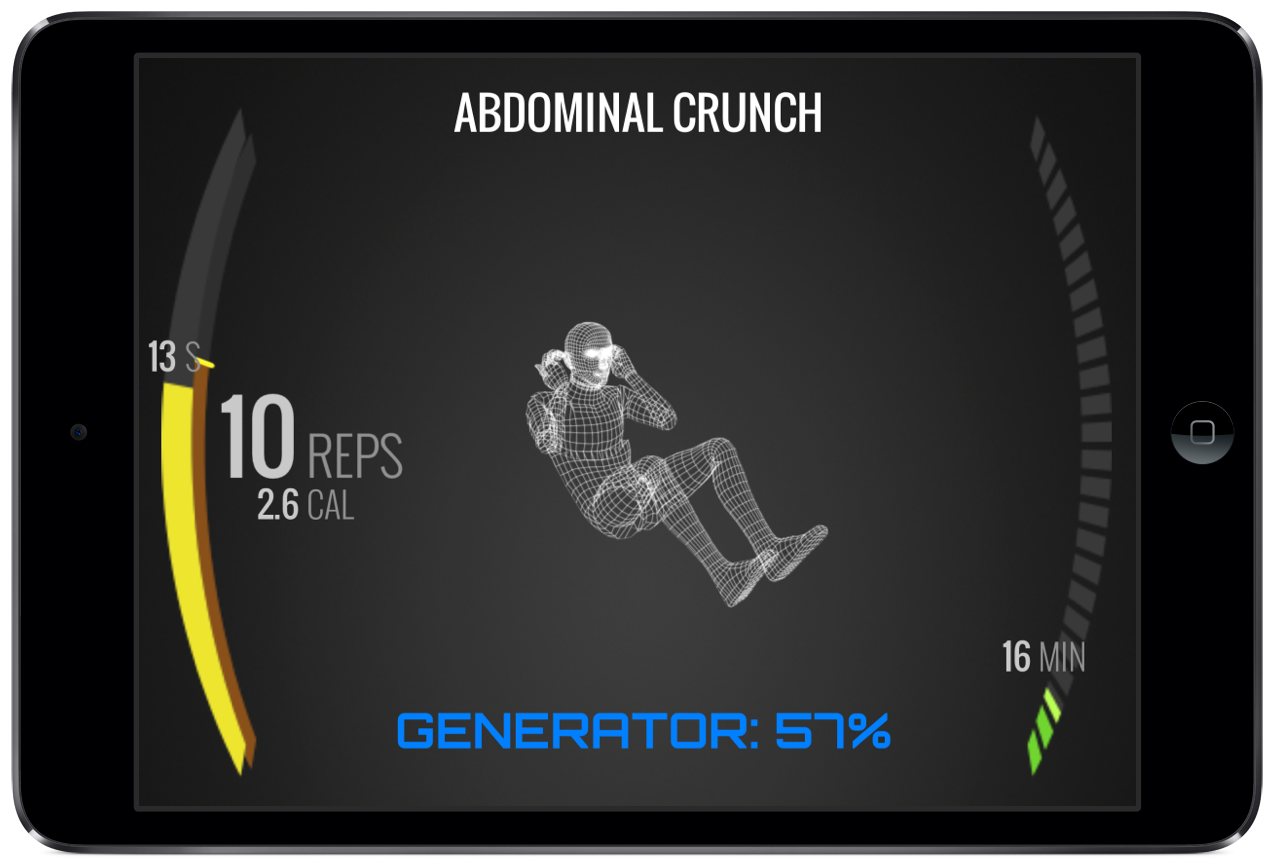
For exercises where you’re standing up, you’ll need to position your phone or tablet on a table. For exercises where you’re on the ground, you’ll need to move it to floor level. The style of the workouts are very similar to the popular "7 Minute Workout", where you’re doing bursts of high intensity interval training, and you get just long enough between each exercise to reposition your device as instructed (and catch your breath).
As well as tracking your movements the app records the calories you burn (you can specify your weight to help with accuracy) and view the time and energy you’ve expended via a stats screen. Stats can be filtered by exercise type (all, core, full, lower and upper). Missions/workouts you complete can be shared on Facebook and Twitter, and there are plenty of achievements to unlock as you advance through the missions too.
If you require a little motivation to get exercising, then definitely give Superhero Workout a try. It's in the App Store now, priced at $4.99.
-

Get 6 months of Bitdefender Antivirus Plus 2015 for FREE [BetaNews exclusive offer]
Publié: août 22, 2014, 11:00am CEST par Wayne Williams

The new Bitdefender Antivirus Plus 2015 keeps consumers safer than ever from online threats. It is designed for extreme ease of use and will actually maximize your computer’s performance. The full version usually retails for $59.95 but BetaNews readers can enjoy it FREE for the next six months!
Bitdefender Antivirus Plus 2015 is among the world’s most effective security software and comes armed with a new Profiles technology that automatically detects whether you are working, playing, or watching movies, and tailors the use of resources to your benefit.
The latest edition boasts plenty of convenient features to save you time. Bitdefender’s Wallet can now automatically fill web forms with user names, passwords, and even credit card details, and Bitdefender’s Vulnerability Scanner not only finds missing patches on your computer, it also helps you download and install them.
Bitdefender was awarded Best Protection by independent analysts for three years in a row, and now brings you an array of simple and highly efficient features to keep you safe amid growing online dangers, and ensure your computer is always working at its best.
And of course the cost, for the next six months, is unbeatable.
Key Features:
- OneClick Security -- Engages security with a single click.
- AutoPilot -- Protects you from new and unknown threats using behavioral technologies.
- Bitdefender Photon -- Eliminates slowdowns and accelerates scanning speed.
- Bitdefender Profiles -- Prevents other applications from slowing you down when you work, play or watch movies.
- Startup Optimizer -- Accelerates boot time by managing startup applications.
- OneClick Optimizer -- Enhances system performance and frees up disk space with one click.
- SafePay -- Dedicated secure browser that protects your online transactions from fraud.
- Wallet -- Secures credentials and financial details while allowing use of autocomplete.
- Security Report -- Displays overall security status for past week and total fixed issues.
- Secure Browsing -- Blocks infected links and tells you when it’s safe to click.
Click HERE to get your free six-month Bitdefender license. There's no time to waste however, as this giveaway is available only for 72 hours. Just enter your email address to receive the license in your inbox.
-

HTC One (M8) for Windows is the Windows Phone you've been waiting for
Publié: août 19, 2014, 5:25pm CEST par Wayne Williams
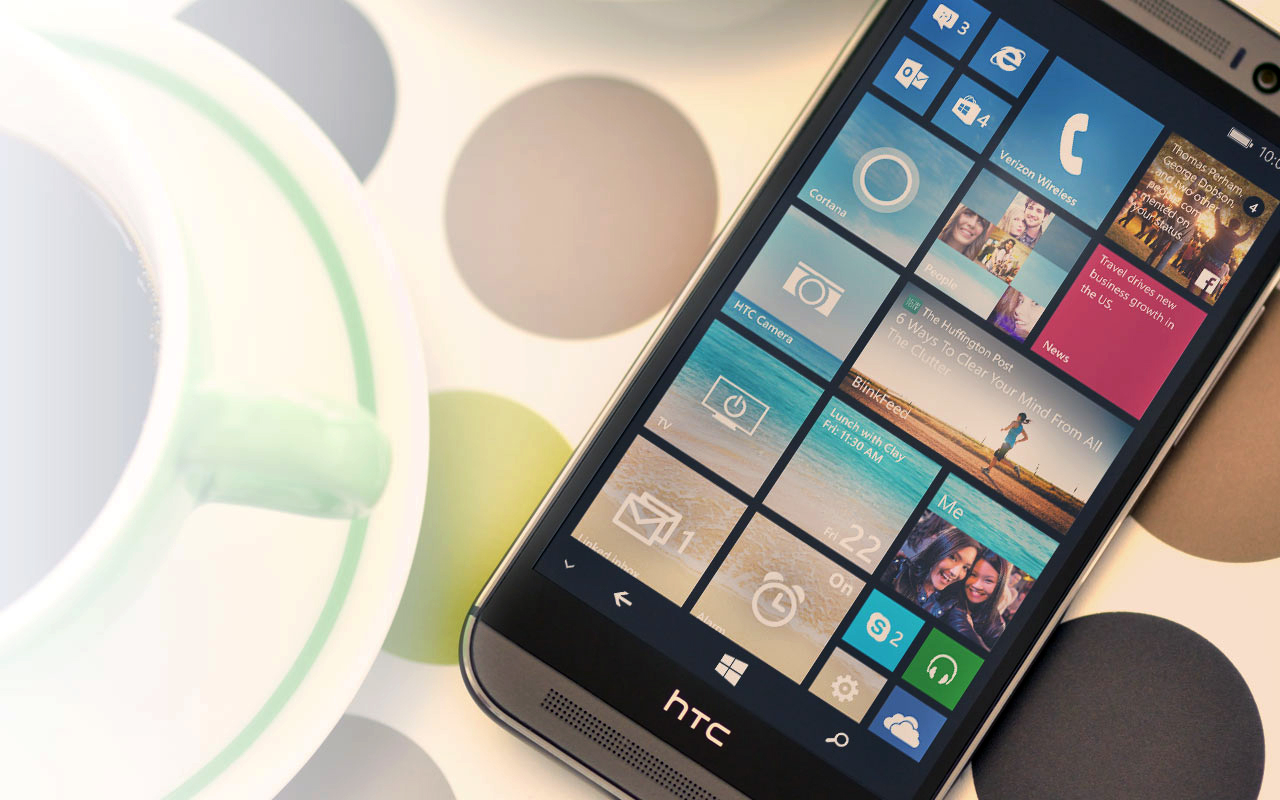
Earlier today the first pictures of HTC One (M8) running Windows Phone 8.1 appeared on the web. The leaked images looked genuine, but we were waiting for official confirmation of the device before sharing the news, and the Taiwanese firm has just provided that.
The HTC One (M8) is one of the best -- if not the best -- Android phones available and the Windows Phone variant keeps everything that’s good about it, including the all-metal unibody design, tapered edges, and curved back, 5-inch 1080 by 1920 display, 2.3 GHz Qualcomm Snapdragon 801 processor, and Duo Camera setup.
"Consumers love the HTC One (M8) and today’s introduction extends that enthusiasm to new audiences hungry for choice in their mobile experience," says Jason Mackenzie, president of HTC Americas. "HTC fills a gap in the market for unique devices that put a premium on form and function. Microsoft shares our vision, and that’s why we committed to bringing the Windows Phone platform to the HTC One (M8)".
This new phone will definitely help give Microsoft’s mobile operating system a boost. Although Windows Phone is gaining market share, it lags a long, long way behind Android and iOS and a new flagship like this -- the first non-Lumia phone to really showcase the tiled OS -- is exactly what’s needed.
"The HTC One (M8) for Windows is true to the flagship product’s award-winning design and unique experience while also taking the best of what Windows Phone has to offer," says Darren Laybourn, corporate vice president of engineering for Microsoft. "We succeeded in offering customers the best of both our worlds with this phone".
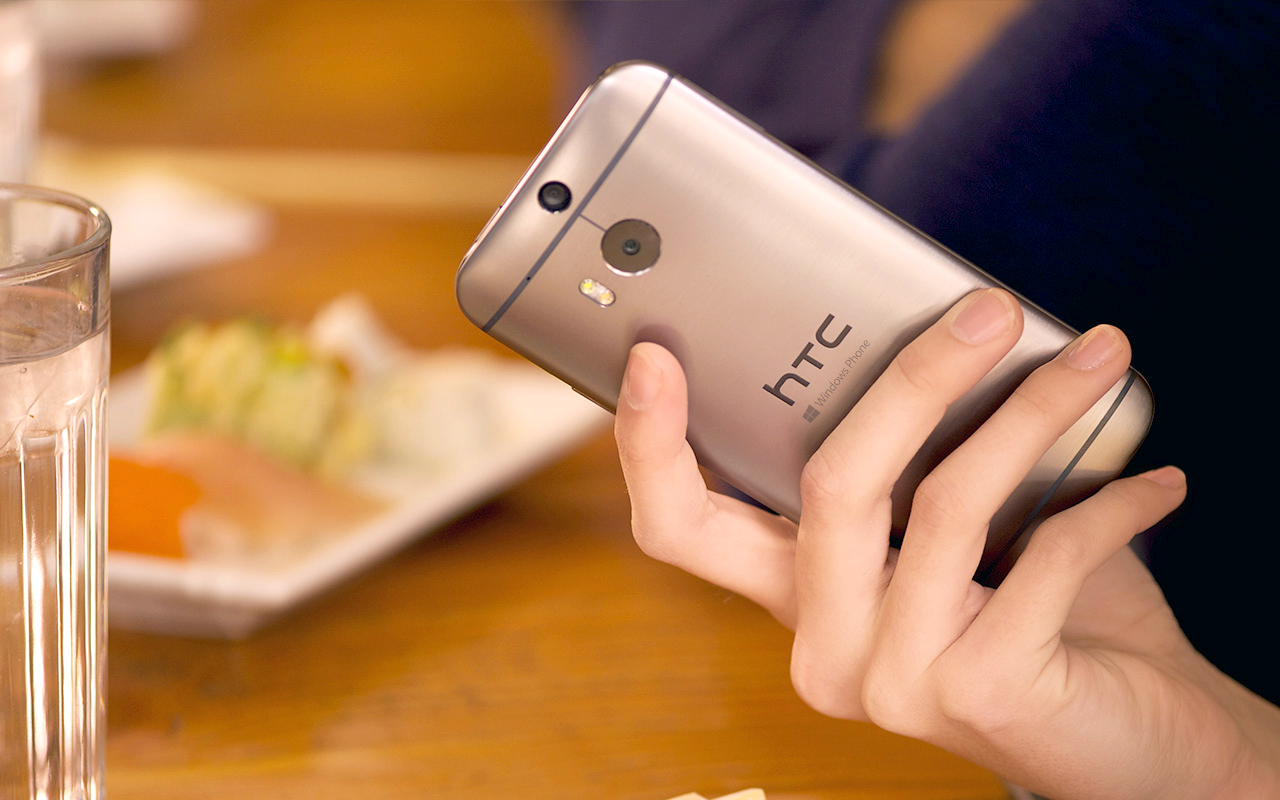
The HTC One (M8) for Windows is available online today, exclusively through Verizon Wireless. It will set you back $99.99 on a new two-year contract (for a limited time), or $29.99 per month on Verizon Edge. It arrives in Verizon stores tomorrow.
Microsoft Stores will also sell the device with Verizon Wireless service (and a special offer for a free HTC Dot View Case and screen protector) for $25.
-

New ransomware charges $300 (early bird special) to unlock your files
Publié: août 19, 2014, 4:15pm CEST par Wayne Williams

PandaLabs has discovered a new strain of ransomware which it is calling Trj/Crypdef.A. The new variant works like other forms of ransomware in that it locks infected computers and encrypts a user’s files before demanding a ransom to get control back.
The ransom demand says "By purchasing a license from us, we are able to rescue your files 100% guaranteed for a very low early bird price of only $300". Don’t think $300 is a bargain? Well, in five days the demand goes up to $600, and after ten days it will cost you $1,000 to unlock your system and restore your files.
Payment is by Bitcoin only and the demand helpfully tells victims to check the current price of the virtual currency using www.bitcoinaverage.com before making a payment.
As always, the best way to avoid this threat and others like it is by ensuring your operating system is up to date, and that you’re running a good antivirus program. Avoid opening email messages and files from unknown sources or visiting potentially unsafe web pages.
-

Microsoft pulls download links to Windows 8.1 August Update, recommends users uninstall some updates
Publié: août 17, 2014, 8:52pm CEST par Wayne Williams

The August Update for Windows 8.1 (once rumored to be Update 2) has been pulled from the web and is currently no longer available for download after Microsoft received complaints that it was causing errors and system instability for some users.
If you attempt to visit the original download links you’ll be met with a message stating "The resource you are looking for has been removed, had its name changed, or is temporarily unavailable".
The worst offender appears to be MS14-045 (Vulnerabilities in Kernel-Mode Drivers Could Allow Elevation of Privilege) and Microsoft recommends that users uninstall that particular update. There’s Knowledge Base article covering this at KB2982791 which includes all the known problems and detailed uninstallation instructions.
I haven’t had any problems with the update, have you? Let us know about your experiences in the comments below.
Image Credit: Syda Productions/Shutterstock
-

Microsoft considering rebranding Internet Explorer
Publié: août 15, 2014, 9:20am CEST par Wayne Williams
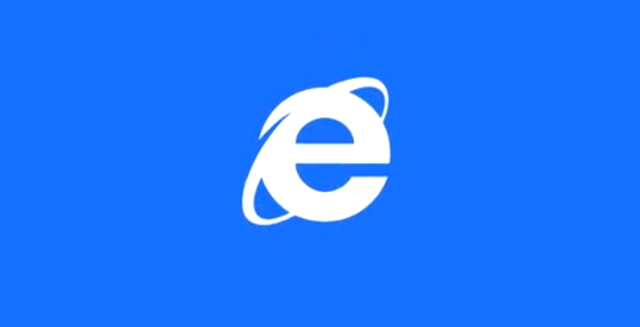
In a Reddit AMA yesterday, the Internet Explorer team discussed the negative reputation surrounding Microsoft’s browser and confirmed that internally they had considered changing the name.
Front-end Engineer Jonathan Sampson admitted, "I remember a particularly long email thread where numerous people were passionately debating it. Plenty of ideas get kicked around about how we can separate ourselves from negative perceptions that no longer reflect our product today".
It’s no surprise that Microsoft decided against renaming the browser. For all the negativity that surrounds it, it’s still a very strong brand -- synonymous with the internet itself in the mind of many web users -- and the people who work on IE have done a superb job in recent years of improving the browser’s reputation. Clever marketing campaigns like the Browser You Loved to Hate have really helped, as of course has building a much better product.
What is surprising is that the debate is still a fresh one. When quizzed, Sampson said, "The discussion I recall seeing was a very recent one (just a few weeks ago). Who knows what the future holds".
So there’s still the possibility of a name change at some point, although I personally think it’s unlikely. A well-known browser with a (dwindling) negative reputation will always do better than a brand new browser with no public awareness. And what sort of message would a rebrand send out anyway? People would just think Microsoft was trying to disguise the flaws of its browser behind a change of name.
If you were thinking of giving Internet Explorer a new name, what would you choose?
-

Chrome to start protecting users from additional malicious downloads
Publié: août 14, 2014, 6:37pm CEST par Wayne Williams

Google’s Safe Browsing service protects users from malicious websites and warns against potentially dangerous downloads in Chrome. According to Google, over three million download warnings are being viewed every week, and because it’s available for other browsers, this technology is helping to keep 1.1 billion people safe.
From next week, Google says it will be protecting users from additional malicious software, delivering warnings whenever you attempt to download something that might try and make unwanted changes to your browser or computer.
Moheeb Abu Rajab, Staff Engineer, Google Security explains, “We’ll show a warning in Chrome whenever an attempt is made to trick you into downloading and installing such software. (If you still wish to proceed despite the warning, you can access it from your Downloads list)”.
The warning will look like this example:

Image Credit: ra2studio /Shutterstock
-

What motivates modern hackers?
Publié: août 14, 2014, 6:00pm CEST par Wayne Williams

Ever wondered why hackers do what they do? Thycotic, a software firm specializing in privileged access password protection, conducted a survey of 127 hackers at Black Hat USA 2014 to try and understand their thinking.
The company found that more than half of the hackers (51 percent) were driven by the fun/thrill, while 19 percent were in it for the money. Few hackers fear getting caught with 86 percent confident they will never face repercussions for their activities.
99 percent said they believed that simplistic hacking tactics such as phishing are still effective, and when asked which types of employees they would most likely target first in order to gain login credentials for a particular company, 40 percent said they would start with a contractor. A smart move, given that Edward Snowden was a contractor, and used his privileged access to steal sensitive NSA documents.
"The motivations and inner workings of today’s hacker community have always been somewhat mysterious, but the damage they can do to an enterprise is painfully clear," said Jonathan Cogley, founder and CEO of Thycotic. "Understanding why hackers do what they do is the first step as IT security teams take measures to better control and monitor access to company secrets. Organizations need to do a better job of protecting the passwords and privileged login credentials associated with contractors and IT administrators, as these employees are a huge target for cybercriminal activity".
The full findings can be viewed in infographic form below.

Photo Credit: ra2studio / Shutterstock
-

Gartner: Now is the time to prepare for Windows 7's end of life
Publié: août 12, 2014, 4:45pm CEST par Wayne Williams
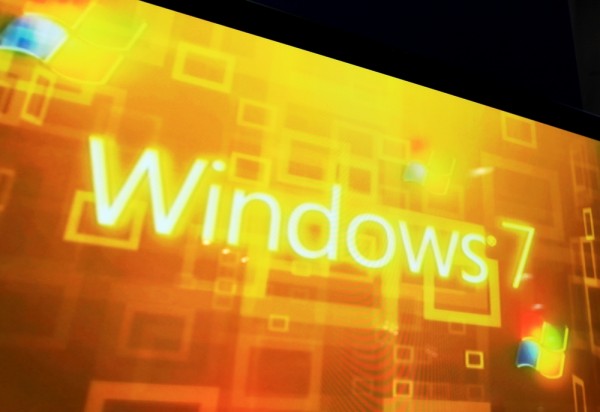
Although Windows XP’s end of life date was set in 2007, many firms failed to completely remove all trace of the aging OS by the time the deadline arrived. In fact, it’s claimed that around 53 percent of businesses still have XP running somewhere in their organizations.
End of support for Windows 7 is set for January 2020 (some way off still, and Microsoft may push it back further), but Gartner says firms need to start planning for it now if they want to avoid finding themselves in a similar situation as many did with XP.
Stephen Kleynhans, research vice president at Gartner, is urging companies to start thinking about the future now.
"Organizations that have already deployed some Windows 8 PCs, or that decide that Windows 8.1 Update 1 provides an attractive platform, should not shy away from deploying new devices with the OS," he says. "However, we expect that by the time an organization is ready for a broad rollout, Windows 8.1 Update 2 will have entered the market. Shifting deployment to Update 2 should be relatively straightforward for most organizations, and in that case, Windows 8.1 Update 1 should be seen as a pilot for that ultimate deployment".
The interesting thing to note is the mention of Windows Update 2. Microsoft has said it has no plans for such an update. At least not at the moment.
Kleynhans recommends that organizations take one of the following actions in the run up to end of life:
- Deploy Windows 8 on new PCs as they arrive, thereby phasing Windows 7 out over time as PCs are replaced -- this may make sense for many organizations.
- Skip Windows 8 and plan to deploy a future version of Windows (perhaps Windows Threshold or even a release after that) to replace Windows 7 -- we believe most organizations will do this. With this strategy, many will not eliminate Windows 7 before support ends unless they budget extra funding to do so.
- Deploy Windows 8 on all PCs to eliminate Windows 7 -- for most organizations, we see little value in doing this, and do not recommend it without a solid business case.
So in other words, don’t go out of your way to install Windows 8.x, but do give proper thought to what you need to do in plenty of time.
Image credit: Adriano Castelli/Shutterstock.com
-

Watch Sony's PlayStation briefing at Gamescom 2014 LIVE
Publié: août 12, 2014, 2:28pm CEST par Wayne Williams

Gamescom 2014, Europe's largest gaming event and tradeshow is taking place in Cologne, Germany right now, and Sony’s PlayStation Briefing will, like Microsoft’s Xbox press conference, be one of the highlights.
The PS4 is currently ahead of the Xbox One in terms of sales, but can it keep that momentum going? We’ll find out what games will be coming up for the console later today. Expect to see some gameplay footage for upcoming role-playing game Bloodborne (a PS4 exclusive), and interesting sounding horror game, A Million Ways To Die. We’ll also hopefully see some footage from Uncharted 4: A Thief's End.
The briefing starts at 10AM PDT/1PM EDT/6PM BST.
If you’re not already at the event, you’re obviously far too late to get there now, but fortunately, we’ve got the live stream courtesy of Twitch all lined up and ready to watch. Pull up a chair and enjoy!
-

Watch Microsoft's Xbox briefing at Gamescom 2014 LIVE
Publié: août 12, 2014, 1:50pm CEST par Wayne Williams
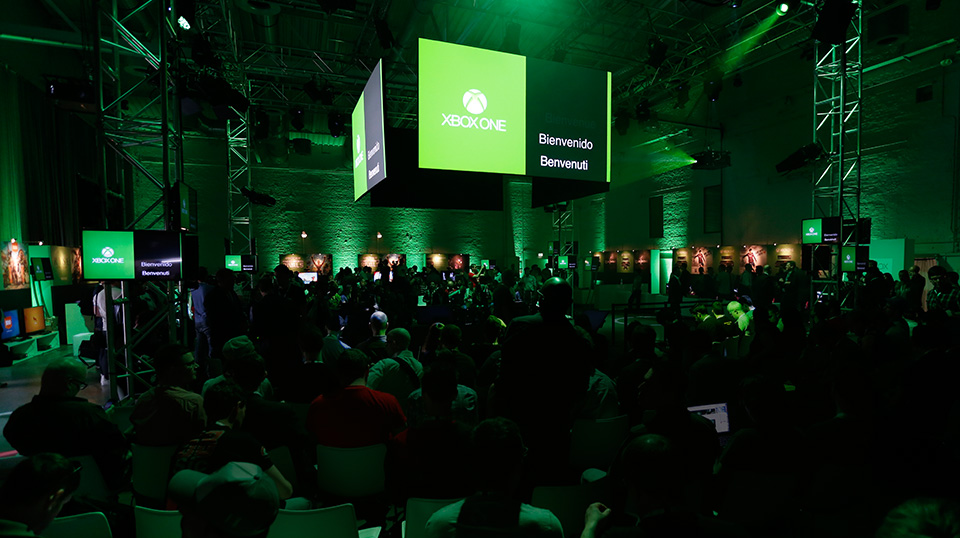
Gamescom 2014, Europe's largest gaming event and tradeshow is taking place in Cologne, Germany right now, and Microsoft’s Xbox Briefing will be one of the highlights.
The Xbox One is losing ground to Sony’s rival PS4, which is massively outselling it at the moment, but with the right games, Microsoft’s console could be right back in the running. At Gamescom we’ll get to find out what is coming up for the Xbox One.
Expect some Halo news, and lots of other exciting reveals.
The briefing starts at 5am PT/1am BST -- so not long to go now.
If you’re not already at the event, you’re obviously far too late to get there now, but fortunately, we’ve got the live stream courtesy of Twitch all lined up and ready to watch. Pull up a chair and enjoy!
-

Average US internet speeds -- how does your state compare?
Publié: août 11, 2014, 4:35pm CEST par Wayne Williams
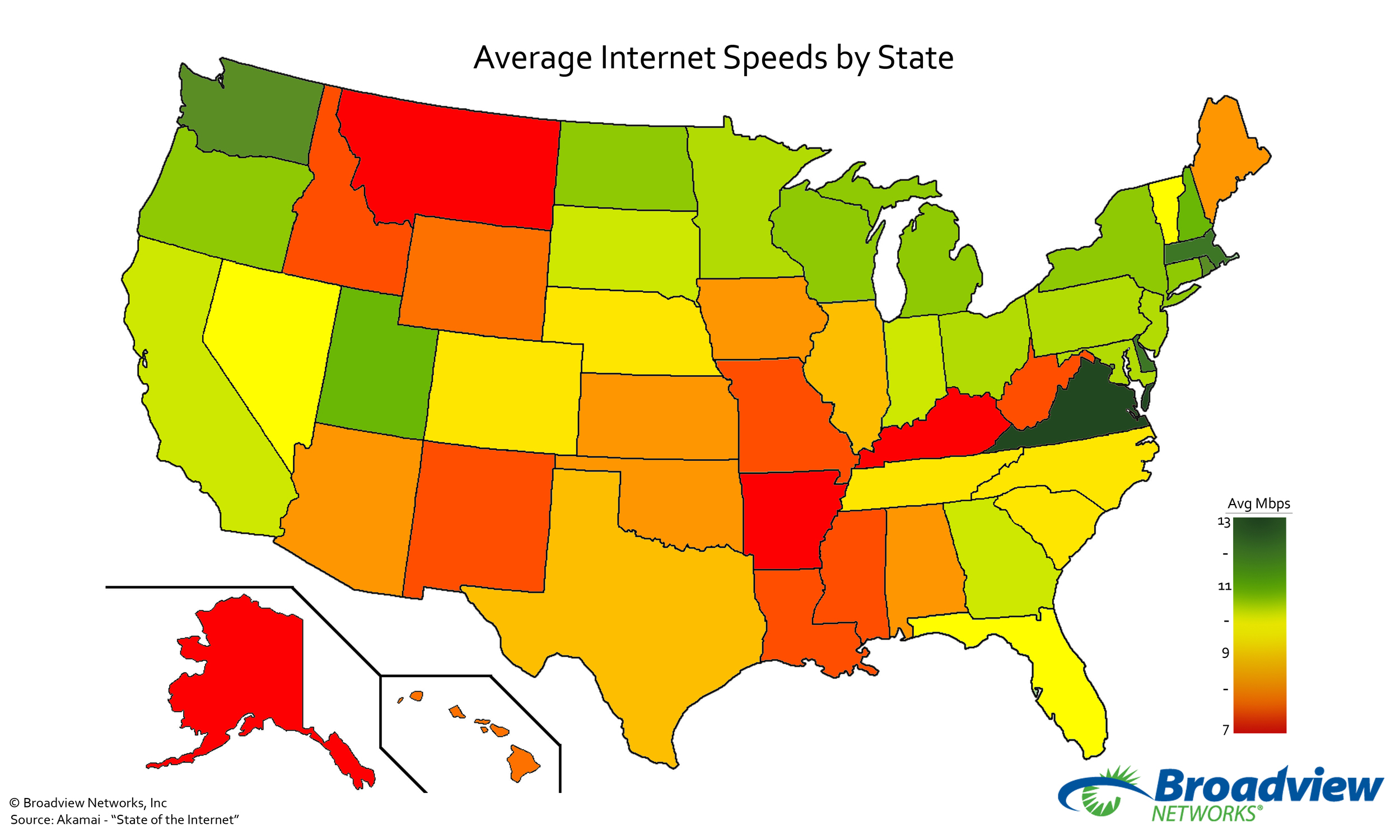
While my colleague Mark Wilson endures glacially slow internet, I’m lucky enough to be on a super-fast 100Mbps connection (but even that’s a bit slow for me -- I’ll be upgrading to 152 Mbps early next year).
The average connection speeds for most internet users is a lot slower, but getting better. Broadview Networks took a look at the average internet speeds in America, and listed the results by state, showing average speed in Q1, and comparing the results quarter-on-quarter and year-on-year.
The company used Akamai’s "State of the Internet" Report to work out the figures for each state and then plotted the results on a map. Dark green states have the fastest speeds and those in red have the slowest. According to Broadview Networks’ findings, Virginia has the fastest internet service in the country (13.7Mbps on average ) while the residents of Alaska have the slowest (7Mbps on average).
The Northeast has some of the fastest speeds in the nation, while the Midwest and less populated states have generally slower speeds.
The full list of results is below. How does your internet speed compare?
State by State Breakdown State Q1 '14 Avg Mbps QoQ Change % (Q1 '14 vs. Q4 '13) YoY Change % (Q1 '14 vs. Q1 '13) Virginia 13.7 -4.3 30 Delaware 13.1 6.3 18 Massachusetts 13.1 2.6 22 Rhode Island 12.9 11 35 D.C. 12.8 5 18 Washington 12.5 8.5 29 New Hampshire 12.3 4 6 Utah 12.1 6 17 Michigan 11.8 13 42 Connecticut 11.7 7.2 18 North Dakota 11.7 14 27 Oregon 11.7 5.2 36 Wisconsin 11.5 9.2 45 New York 11.5 3.5 18 Maryland 11.3 3.7 58 Pennsylvania 11.3 6.3 23 Ohio 11.2 40 19 New Jersey 11.2 2 26 Minnesota 11.1 8.8 38 California 10.9 4.1 27 South Dakota 10.8 12 31 Georgia 10.7 21 57 Indiana 10.7 7.4 32 Vermont 10.2 5.7 -17 Nevada 10.1 16 40 Florida 10.1 4.4 36 Tennessee 9.9 7.4 30 Colorado 9.7 5.9 28 South Carolina 9.7 5.3 21 North Carolina 9.7 4.8 15 Nebraska 9.5 10 43 Texas 9.4 6.3 29 Illinois 9.2 5.7 21 Alabama 8.9 10 39 Oklahoma 8.9 8.1 30 Iowa 8.8 4.9 33 Maine 8.7 7.8 20 Arizona 8.7 1.1 30 Kansas 8.6 7.2 91 Hawaii 8.4 3.6 31 Wyoming 8 8.3 23 Idaho 7.7 9.5 60 Louisiana 7.7 -1.9 38 Missouri 7.7 7.6 26 New Mexico 7.6 1.9 22 Mississippi 7.6 7.3 34 West Virginia 7.5 6.1 29 Montana 7.3 9.1 25 Kentucky 7.3 5.8 23 Arkansas 7.3 8.4 69 Alaska 7 7.8 33 -

Google's Nest Thermostat can be easily hacked to spy on owners
Publié: août 11, 2014, 9:41am CEST par Wayne Williams
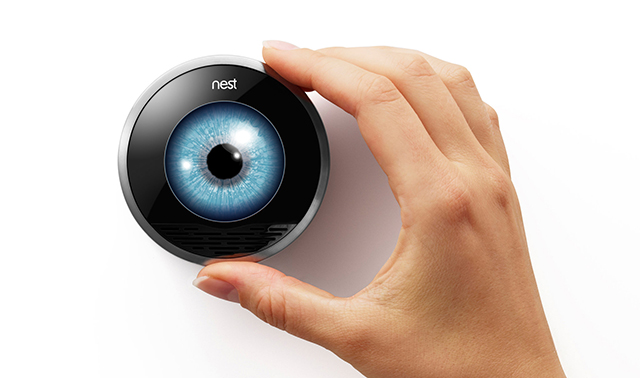
When Google bought Nest Labs for $3.2 billion seven months ago, I described the move as the start of a home invasion. Google already knows a lot about you, including where you live, what your interests are, where you go on the Internet and in the real world (via Android), and its acquisition of Nest, which makes smart thermostats and (not so smart) smoke detectors, meant it would potentially also know what you get up to in your own home.
As it turns out, Google using Nest products to find out what customers are doing is just one worry. A team of researchers has discovered an easy hack that allows anyone to gain control of Nest’s smart thermostat and turn it into a spying device which can reveal when you’re at home or away, and even divulge your Wi-Fi credentials.
Yier Jin and Grant Hernandez from the University of Central Florida, along with independent researcher Daniel Buentello, revealed the hack at last week's BlackHat security conference in Las Vegas, and it’s a pretty simple one. Essentially, all the attacker has to do is hold down the power button and insert a USB flash drive in order to enter developer mode. From there, they can load a custom compiled kernel to gain access to the software protocols used by the device.
Yes, the hacker would need access to your home to do it, but that doesn’t make it any less of a concern -- especially as the whole attack process takes just 10-15 seconds to complete. And of course, there’s the possibility of attackers buying devices, taking control of them, and then selling them on to unwitting customers.
Explaining the methodology, the researchers said, "Although OS level security checks are available and are claimed to be very effective in defeating various attacks, instead of attacking the higher level software, we went straight for the hardware and applied OS-guided hardware attacks. As a result, our method bypasses the existing firmware signing and allows us to backdoor the Nest software in any way we choose". This includes introducing rootkits, spyware, rogue services and other network scanning methods.
"Entering into that mode allows you to upload your own code, your custom code, which allows you to attack existing code, implant your own and reboot normally, but maybe have something else running in the background," Hernandez adds. "We have access to the device on the highest level, and we can send stuff that Nest sends to us as well".
-

Xbox One launching in India exclusively through Amazon
Publié: août 7, 2014, 9:06am CEST par Wayne Williams
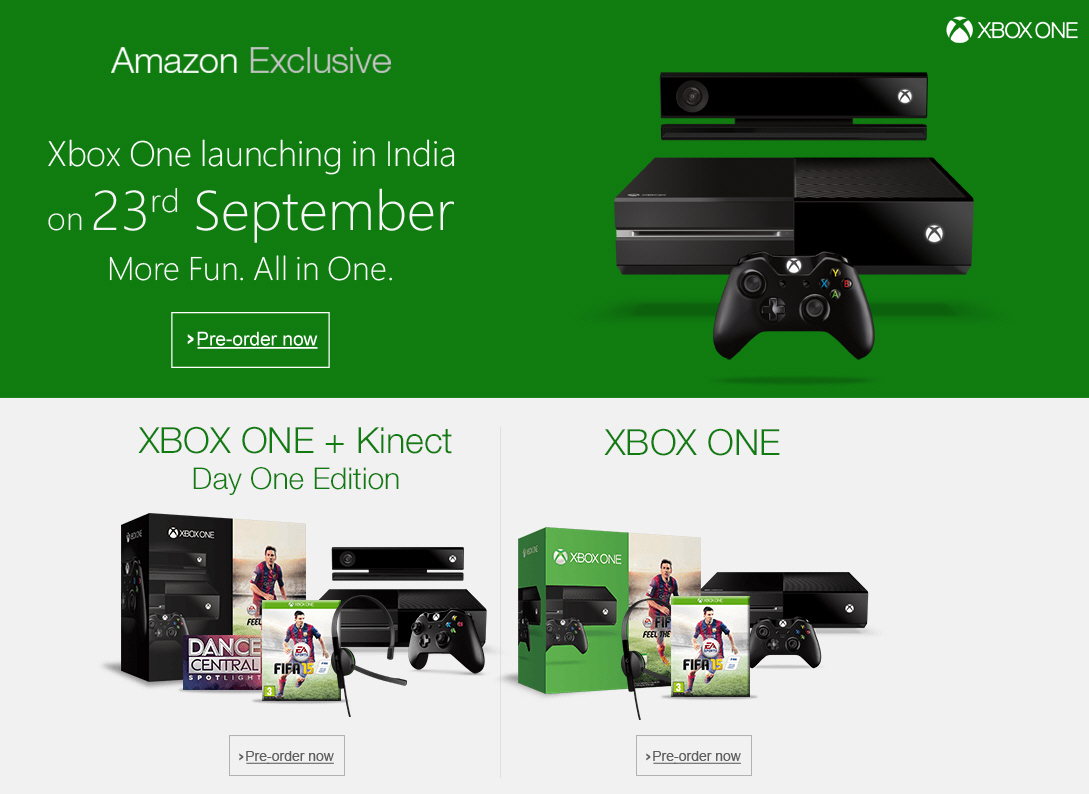
Microsoft is slowly expanding the number of territories in which it’s possible to buy its new game console, a move which will no doubt help in the sales battle against rival Sony’s PS4. The Xbox One is set to go on sale, officially, in China in September, and it will be launching in India soon too.
Rather than pushing the console out to brick and mortar stores in India, Microsoft has chosen instead to launch it exclusively through Amazon.in. While it might seem a rather strange move to limit the console’s availability to a single online retailer, it actually makes a lot of sense. The Xbox 360 flopped badly in India at launch, and Microsoft will be keen to avoid a repeat of that experience.
Amazon India’s website lists the Xbox One launch date as the 23 September, but the console is available for pre-order now. The Xbox One with Kinect Day One Edition (Free Games: FIFA 15, Dance Central Spotlight DLC) is priced at Rs 45,990 ($750) and the Xbox One without Kinect is Rs 39,990 ($652).
Amazon is also offering Rs 10,000 ($162) of special offers to the first 1,000 pre-orderers. The deal includes an Amazon gift card worth Rs 1,500 ($24), two free Blu-rays (The Amazing Spider-Man 2 and Captain America -- The Winter Soldier), as well as coupon codes for money off speakers, backpacks and an Xbox One controller.
The Xbox One is available to pre-order from Amazon India now.
-

Forget fancy features -- most smartphone users just want better battery life
Publié: août 6, 2014, 1:48pm CEST par Wayne Williams
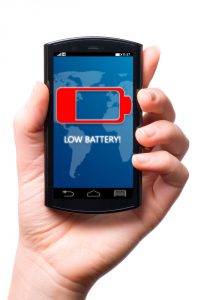 Smartphone makers would do well to take into account the results of a new poll from price comparison and switching service uSwitch.com which found that just 3 percent of Smartphone users are interested in quirky or unique features, such as Amazon’s Fire phone’s face tracking.
Smartphone makers would do well to take into account the results of a new poll from price comparison and switching service uSwitch.com which found that just 3 percent of Smartphone users are interested in quirky or unique features, such as Amazon’s Fire phone’s face tracking.While gimmicks like that might help differentiate one device from another, what most smartphone users want is a phone that is easy to use and doesn’t require constant charging -- and preferably with built-in fingerprint scanning security.
The uSwitch.com survey was conducted online in July 2014 among 1,605 British mobile users on pay-monthly contracts. The top three most important features were listed as ease of use (20 percent), call reception (19 percent) and battery life (19 percent). 10 percent care most about apps.
What does it take to persuade potential buyers to switch to a new device? Long battery life (89 percent), a waterproof body (67 percent) and a zoom camera lens (66 percent) were the top draws.
Three quarters (75 percent) said eyeball-tracking technology -- as seen on the Samsung Galaxy S5 -- wasn’t something that would persuade them to buy a new phone (66 percent of users with the feature never use it), 69 percent weren’t concerned about voice controlled assistants (55 percent of those with access to one don’t bother with it), and 62 percent couldn’t care less for 3D displays -- bad news for Amazon's Fire phone.
Fingerprint-scanning security was a popular inclusion though (good news for Apple and Samsung), with more than half of smartphone users (56 percent) who have this feature saying they loved it. However, another 32 percent said they don’t actually use it -- which is a little crazy.
Flexible phones were a massive turn off, with 62 percent saying it would have zero impact on their purchasing decision, and 20 percent saying it would actually make them look elsewhere for a different phone.
"It’s becoming increasingly hard for smartphone makers to differentiate their handsets from those of their rivals. They hope that flash features like Fingerprint ID on the iPhone 5S, or Amazon’s Fire Phone and its 'Dynamic Perspective' display, will give their phones the edge. However, our research shows that many Brits can spot a gimmick from a mile away. It’s actually the basics that affect the everyday user experience -- like long battery life and a robust design -- that people really care about", says Ernest Doku, telecoms expert at uSwitch.com.
Almost one in eight (13 percent) of those who responded own feature phones, with nearly half (47 percent) admitting they don't need a smartphone. Cost was a big turn off here too. Over 65s are least likely to own smartphones -- 32 percent don’t have one, with 60 percent saying they just don’t need an internet-connected phone.
The table below shows the responses to the question "If you were choosing a new smartphone, which of the following features would make you more likely to buy it"?
More likely to buy No difference Less likely to buy Long battery life 89.2% 10.8% 0% Fingerprint scanning security 37.6% 55.5% 6.8% Voice control 26.1% 68.9% 5.1% Eyeball tracking 14.2% 74.9% 11% Fingerprint-proof screen 48.5% 48.1% 3.4% Waterproof body 67.2% 32.3% 0.5% A zoom camera lens 66.4% 32.1% 1.5% 3D display / graphics 26.4% 61.9% 11.7% Flexible phone 17.7% 62% 20.2% Projector 32.3% 54.5% 13.3% Mobile payment technology 34.5% 59.7% 5.8% What do you look for when choosing a new phone?
Photo credit: Sergey Peterman/Shutterstock
-

Apple and Samsung agree to drop patent cases outside the US
Publié: août 6, 2014, 9:24am CEST par Wayne Williams
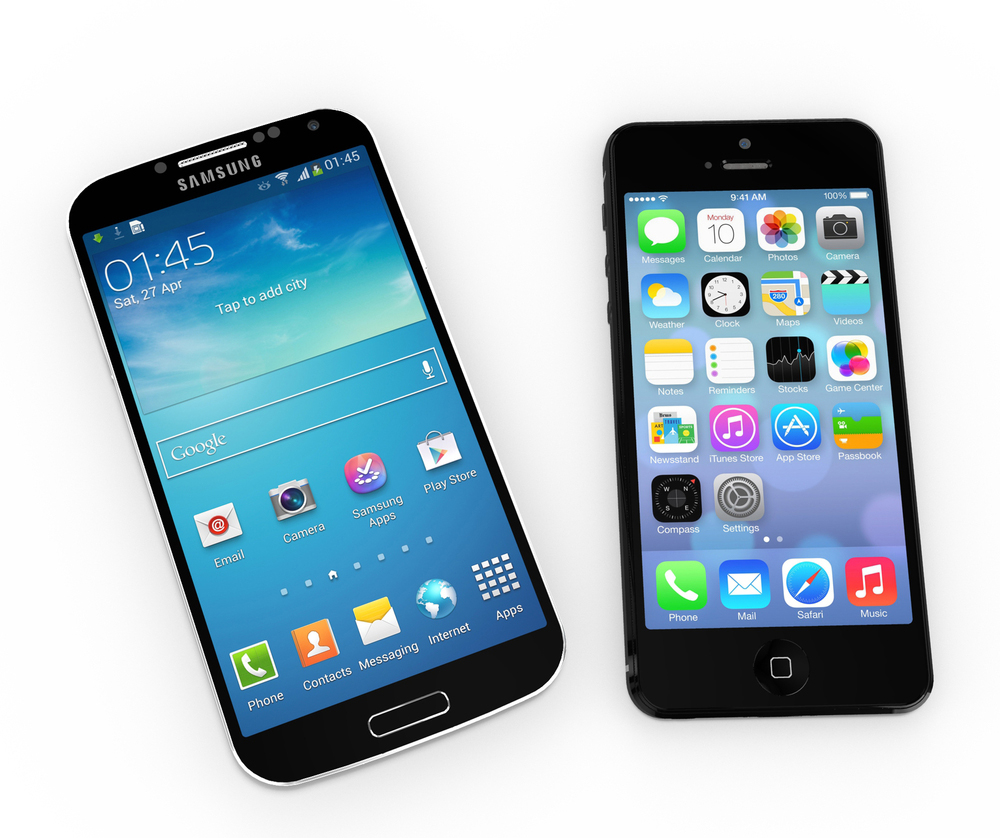
Apple and Samsung have been waging a global patent war since 2011. Apple famously won $1.05 billion in damages in an American court two years ago (a verdict still being challenged by Samsung), but the two companies have been continuing to sue each other since, including fighting a range of infringement cases in nine other countries.
Finally, though, it seems as if peace has broken out between the two smartphone giants, with news today that Apple and Samsung have agreed to end all patent litigation outside the United States.
The two companies had been battling it out across nine other nations -- Australia, France, Germany, Italy, Japan, the Netherlands, South Korea, Spain, and the United Kingdom -- but appear to have come to the conclusion that there was little point in continuing to waste time and resources for limited gains.
"Apple and Samsung have agreed to drop all litigation between the two companies outside the United States," the companies said in a joint statement. "This agreement does not involve any licensing arrangements, and the companies are continuing to pursue the existing cases in US courts".
The global patent wars have delivered mixed results, with little return for effort, and the real battle ground remains the US. The absence of any licensing agreements shows the two firms remain committed to pursuing existing cases in the American courts.
Photo Credit: Pedro II /Shutterstock
-

Microsoft's '3 Reasons Windows 8.1 is better' won’t convince anyone to switch
Publié: août 4, 2014, 9:18pm CEST par Wayne Williams

Microsoft continues to try and change opinions regarding its tiled OS, and today the company introduces a new video showcasing three reasons Windows 8.1 is better. It doesn’t say what it’s better than -- Windows 8, possibly, or Windows 7 -- but it does show how you can use Windows the way you want.
The minute long video is fast paced, colorful, and set to a pumping music track ('Sassy Gang' by Mike Sampey and Mark O'Grady). Frankly if you’ve never used the tiled OS before you probably won’t have a great idea of what is going on, but the flashy captions might help you make some sense of things. As for the three reasons? They are, in order, The Desktop ("it comes up automagically!"), The Apps (which you can pin to the desktop or the Start screen), and The Navigation (the ease with which you can switch between desktop and full screen apps).
I’m not sure the ad will convince anyone who has yet to try Windows 8.1 to make the switch, and it’s clearly aimed at a young audience. The 'It' at the start and end of the video ("Just the way you want it") cycles through various styles -- knitted, quilted, meat, leopard skin, fruit, and so on, before ending on a cake with cherries on top. Presumably Microsoft’s way of saying you can have your cake and eat it with the new OS.
I want to try and find something nice to say about this ad, I really do, but I just can’t see what Microsoft is hoping to achieve here. The video is too fast paced to sell the benefits, and I agree with YouTube commenter mossimen who says:
Horrible commercial, got a headache just by looking at it. They should try something more slow and more clear. If people don’t know W8 they don't get what’s going on from a W7 perspective.
And that I think is spot on. If you’re a Windows 7 user this will just convince you to stick with your current OS rather than switching to something that just looks really confusing and less capable.
But maybe that’s just me. Take a look at the video for yourselves, and let me know what you make of it in the comments below. Hit or miss?
-

Home phone maker Gigaset launches new range of tablets in the UK
Publié: août 4, 2014, 1:02pm CEST par Wayne Williams
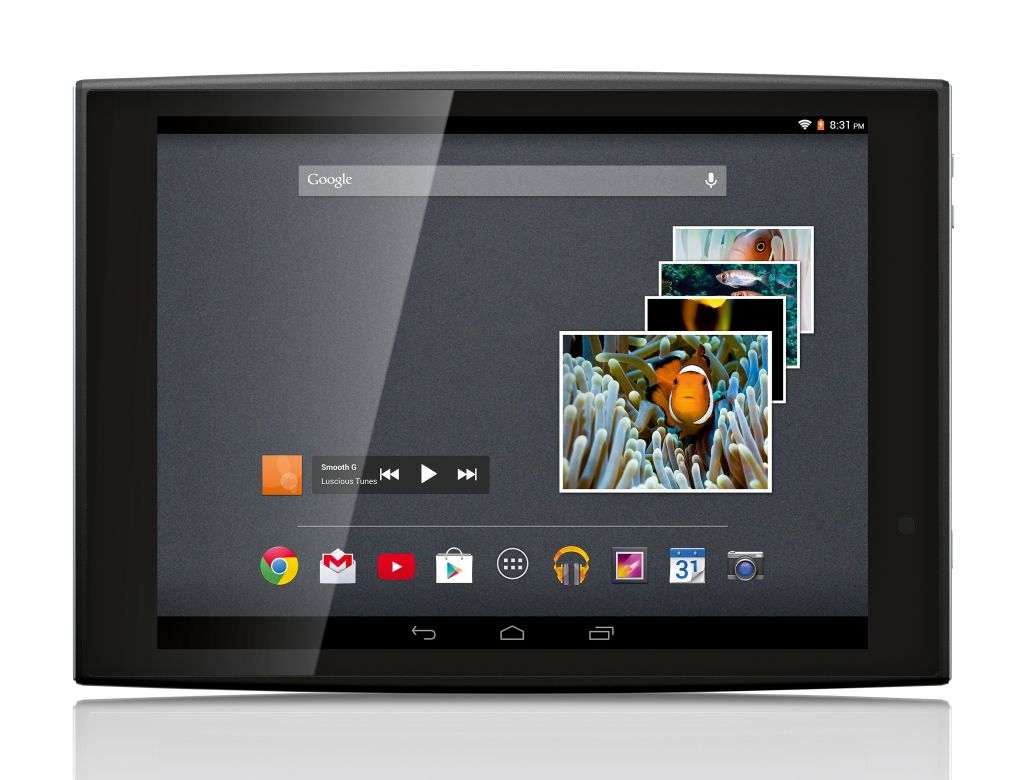
Gigaset (previously Gigaset Siemens) is launching a range of affordable Android tablets in the UK. This is the first foray into the tablet market for the home phone specialist which will initially be offering two devices -- an 8 inch model and a 10 inch one.
The smaller tablet, the QV830, is available to buy from Curry’s now, priced at £99.99, while the larger QV1030 will be available shortly. The price for that model has yet to be confirmed.
As you’d expect from the QV830's pricing, the two tablets aren’t exactly the most powerful on the market. The smaller device has an 8 inch, 768 by 1024 screen, 8GB of flash storage, 1GB RAM, a 5 megapixel rear camera and a 1.2GHz quad core processor.
The QV1030 has a 10 inch, 2560 by 1600 HD screen, 16GB flash storage, 2GB RAM, 8 megapixel rear camera with dual flash LEDs and a 1.8GHz quad core processor.
Both come with Android Jellybean 4.2.2 rather than KitKat.
Amy Ward, marketing manager at Gigaset UK said: "Our new tablets have been designed with the whole family in mind to be easy to use, fast and accessible. We want to enable more people to enjoy the benefits of a tablet both at home and at work and are confident that the new QV830 and QV1030 tablets from Gigaset will prove popular among customers".
Explaining the company’s decision to diversify, Ward says, "The move into the tablet market is a natural progression for Gigaset as we look to expand our portfolio and use our expertise in telecommunications to create even more high quality, meticulously designed technology for the home".
-

Windows 8.1 Update 2 arriving this month -- don’t get too excited
Publié: août 4, 2014, 9:45am CEST par Wayne Williams

In the (nearly) two years since launch, Microsoft has made sweeping changes to its tiled OS. The road from Windows 8 to Windows 8.1 Update, has been an interesting, not to mention bumpy one. I was never a great fan of Windows 8, but I love the operating system it’s become.
However, poor market share, and negative word of mouth has meant that Microsoft has to move on and away from 8.x as quickly as possible and, as a result, any future changes and additions -- including the reintroduction of the Start button -- will be rolled into Windows 9 instead of appearing in the next 8.x Update, as had originally been rumored.
According to Windows watcher Mary Jo Foley, Update 2 is still set to arrive on August 12, as part of Patch Tuesday, but now it will be a relatively minor update. So minor in fact, that Foley says Microsoft will be referring to it simply as the "August update". The changes will be minimal, and there will be no big new features to get excited about. The Windows 8.x journey is nearing the end of the road.
Before Windows 8.1 Update arrived it was being referred to as Windows 8.1 Update 1. The trouble with the original name was it suggested there would be an Update 2, and Update 3 and so on, which wasn’t the smartest approach for a company already looking to move on to the next OS release. Despite Microsoft dropping the number from the Update, many users were still expecting at least one final push, a big Update 2, but it seems that’s not going to happen now.
Not only won’t the forthcoming update be very exciting, it won’t even be mandatory -- you can choose for yourself whether or not to install it.
-

Turn a Raspberry Pi into your own personal cloud
Publié: août 1, 2014, 8:15pm CEST par Wayne Williams
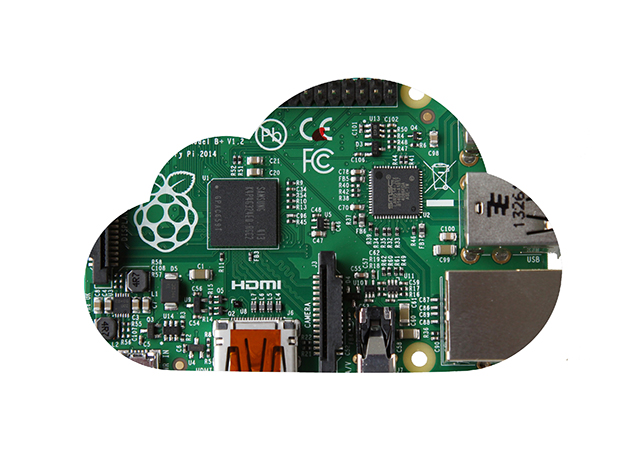
Tonido lets you transform a PC (spare, or otherwise) into a web server so you can securely access your files from anywhere, share content with friends, and stream music over the internet. You can expand the software’s functionality by installing plug-ins and there are free apps available for iPhone, Android, BlackBerry and Windows Phone.
The company has also just introduced Tonido Personal Cloud Server for Raspberry Pi, so you can now turn your credit card sized device into a personal cloud, and remotely access all the files held on any storage connected to it.
The software is free and will run on Raspbian or Raspbmc OS. The instructions for getting up and running are very straightforward:
sudo mkdir /usr/local/tonido
cd /usr/local/tonido
sudo wget http://patch.codelathe.com/tonido/live/installer/armv6l-rpi/tonido.tar.gz
sudo tar-zxvf tonido.tar.gz
./tonido.sh start
Open the Tonido Website by going to http://<RaspberryPi IP Address>:10001 and follow the setup instructions. You can set Tonido to start automatically when the Pi boots, which you'll probably want to do.
Everything you need, including the software and additional setup instructions can be found here.
-

Windows 8.x loses market share for second consecutive month
Publié: août 1, 2014, 10:53am CEST par Wayne Williams

Windows 9 can’t come soon enough for Microsoft, as Windows 8.x continues to lose market share, according to the latest usage data from Net Applications.
Last month I reported that in June Windows 8.x had gone into reverse gear, losing market share for the first time, and posed this question -- "Statistical anomaly or downward trend?" It’s too early to call it a "trend" but anyone who expected the tiled OS to make a recovery in July will be disappointed by the latest set of figures. There’s a striking difference this time around too -- both Windows 8 and 8.1 show drops in July. Ouch.
In June, Windows 8.x lost overall share because while Windows 8.1 gained 0.26 percent, Windows 8 dropped 0.36 percent, giving the tiled OS an aggregate loss of 0.1 percent. In July however, while Windows 8 lost just 0.01 percent share, Windows 8.1 dropped by 0.05 percent (from 6.61 percent in June to 6.56 percent in July) -- the first time the new OS variant has lost market share. Combined Windows 8.x went from 12.54 percent in June to 12.48 percent in July, a fall of 0.06 percent.
The decrease in market share is still minimal, and there will be plenty of people in the comments arguing against its importance, but in no universe can the latest numbers be called a win for Microsoft’s divisive OS. At best, you can say it's stalled.
Someone said to me last month that reporting on percentages was "bad journalism" and "actual user numbers are needed for operating systems to support my claim". My response to that is there are no user numbers available. Net Applications provides usage data as overall percentages. You can argue how accurate that data is, but it’s the best we have, and paints a clear picture.
Market share for Windows XP continues to drop, as you would expect, although usage only fell by 0.49 percent in July (less than the decrease experienced by 8.x) and Windows 7 -- to the surprise of precisely no one -- grew again. Up from 50.55 percent in June, to 51.22 percent in July, for a difference of 0.67 percent.
Will Windows 8.x lose yet more market share in August, or can it regain some momentum? We’ll find out in a month’s time.
//
Photo Credit: Cris Kelly/Shutterstock
-

How to access Windows 8.x emoji on a desktop PC
Publié: juillet 30, 2014, 9:06pm CEST par Wayne Williams

The touch screen keyboard available on Windows 8.x tablets -- like Microsoft Surface, for example -- gives you access to a wealth of emoji you can use in chats, emails, comments and so on. As well as the usual smileys, there are hand signs, hearts, cartoon characters, vehicles, weather symbols, and many more to pick from. Just select the character set you want at the bottom of the keyboard.
If you’re not using a touch screen device, but still want to access these characters you can.
All you need to do is right-click the taskbar, go to Toolbars and select Touch Keyboard. A virtual keyboard will open, and you can click on the emoji key and select the characters you want.
A Touch Keyboard button will be displayed in the taskbar, so you can quickly access the virtual keyboard, and the emoji collection, as and when required.
-

Formula One websites do battle once more during the Hungarian Grand Prix
Publié: juillet 29, 2014, 12:10pm CEST par Wayne Williams

Last week web performance specialist Keynote monitored and compared 11 Formula One constructor team web pages during the German Grand Prix to see how they fared under pressure. The results made for interesting reading.
The Hungarian Grand Prix, staged a couple of days ago, was a classic race, packed with excitement, and topped with a surprise win by Red Bull's Daniel Ricciardo. Keynote monitored the same F1 websites again to see how they did second time around, and as you might expect changing race fortunes did have a noticeable impact on site performance.
Keynote found that during the Hungarian Grand Prix on Sunday (27th July), the Red Bull constructor homepage took longer to load content (9.11 seconds), on average, than it did in the German Grand Prix the previous week (8.8 seconds). Its load success rate also dropped from 99.65 percent to 98.08 percent, which could be due to increased visitors to the site, as a result of Daniel Ricciardo’s victory.
"It’s interesting to see how the homepage of the Red Bull constructor team site coped with its win at the Hungarian Grand Prix on Sunday, especially since Red Bull beat Mercedes to first place, for only the second time this season", says Thomas Gronbach, digital quality expert at Keynote.
"Daniel Ricciardo’s win is likely to have drawn in many visitors to its site and, as such, could be the reason why its online performance was poorer; compared to last week’s Grand Prix race in Germany it struggled to load content and had a lower load success rate. The site owners could have better prepared the Red Bull homepage, so that it was able to cope with this level of interest and match its online performance with its success on the track -- a lesson that needs to be learned ahead of the Belgian Grand Prix next month".
"At Keynote, we would recommend that site owners aim for a consistent response time of less than two seconds and a load success rate of more than 99 percent. This will ensure fans, such as those visiting the Red Bull constructor team site, are always able to access the final scores and track its progress throughout the season," concludes Thomas.
Measurement Performance (seconds) Availability (percent) F1 - Caterham 4.76 95.60 F1 - Ferrari 4.33 100 F1 - Force India 8.05 100 F1 - Lotus 3.36 100 F1 - Marussia 2.66 100 F1 - McLaren 5.19 100 F1 - Mercedes 5.18 98.07 F1 - Red Bull 9.11 98.08 F1 - Sauber 4.80 100 F1 - STR 8.50 98.02 F1 - Williams 6.64 99.86 -

SlimClip -- a minimal iPhone case with clip-on functionality [Review]
Publié: juillet 28, 2014, 4:24pm CEST par Wayne Williams
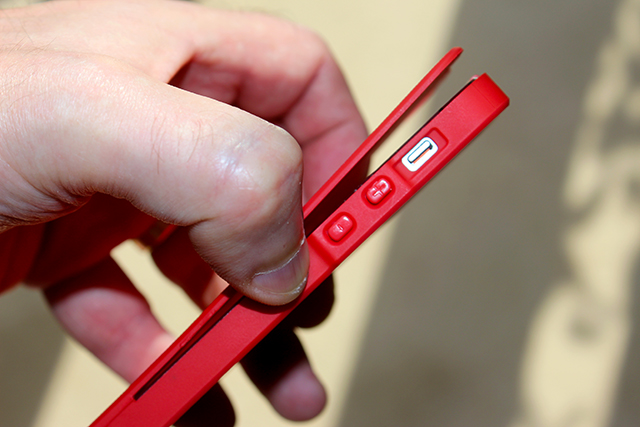
When I go for runs, my iPhone always comes with me, providing music and motivation through apps like Zombies, Run! Usually I just jam the device in my pocket, but that's not always possible, or practical. There are other ways to carry your phone with you, including using armbands, but SlimClip offers an alternative option.
The plastic case has a thin flap on the back. You lift this up to slide the iPhone into the enclosure, and the flap doubles as a clip so you can attach the device to your waistband. It's a simple, but very clever idea that works well.
I've been protecting my phone with the Kloqe, so to switch from an all-aluminum-case to a plastic one feels like a backward step, and certainly when you first remove the case from the box it does feel a bit cheap in your hands. That said, once the phone is in place the case looks good and fits snugly, with holes for the camera, ringer toggle and speaker, microphone, charger and headphone socket. There are buttons for power and volume built into the SlimClip.
The phone clips on upside down, so the headphone socket faces up, making it ideal for listening to music while exercising, or on the move.
SlimClip adds very little bulk to the phone (you won't look like a security guard with it on your hip), and clips on tightly so there's no danger of it coming loose while jogging.
I would prefer it if there was a way of locking the flap flat when not in use -- shove the phone in your pocket upside down and things like coins end up under the flap -- but that's a small niggle (and easily solved with a piece of tape if it becomes a problem).
The case is available in a choice of colors -- black, white, red, gray, blue, yellow and orange, and priced at $40 plus taxes and shipping.
You can get it now from Wonderful Things Factory.

-

Xbox One now available for pre-order in China
Publié: juillet 28, 2014, 8:56am CEST par Wayne Williams

On Friday, China Telecom, the country's third biggest telecommunications company, said it would start selling the Xbox One in China from September, although no pricing details were revealed.
Today JD.com Inc, China's second largest e-commerce company (by market share), confirmed it has started to accept pre-orders for the games console.
According to Reuters, the pre-orders, which will run from July 28 to July 30, will be taken via Tencent Holdings' mobile social networks Mobile QQ and WeChat, which is known as Weixin in China.
The all-in-one games and entertainment system will be the first of its kind to launch in China, and the first foreign games console since the government lifted a 14-year old ban on such devices in January. Console sales were banned in 2000 on the back of concerns that games were negatively affecting the mental health of players.
Although the recent uncoupling of the Kinect and resulting price cut has seen the Xbox One enjoy a healthy sales spike, rival Sony’s PlayStation 4 has consistently outsold it.
China is a potentially huge market for the Xbox One with an estimated half a billion people playing games. According to Microsoft that’s "roughly more than a third of the country’s population and more than the entire population of North America".
-

Seven teenage tech entrepreneurs who made millions before they turned 21
Publié: juillet 26, 2014, 1:36pm CEST par Wayne Williams
If you’re a tech entrepreneur, or want to be, the good news is there’s still plenty of money to be made if you have a great idea, and can attract the right audience and/or investors.
According to the Kauffman Foundation, the average age of first-time tech entrepreneurs is 39 but really there’s no age limit -- they can be much older, or much, much younger. In fact plenty of teens have managed to make it big with nothing more than a great idea and the willingness to pursue it.
WhoIsHostingThis.com has put together a new infographic showcasing seven teenagers who made millions in this way. These include Summly app creator Nick D’Aloisio who made $30 million by selling his creation and services to Yahoo, and Brian Wong who founded mobile advertising platform Kiip.me which, to date, has raised $15.4 million.
The below infographic provides information on the age at which each entrepreneur made his or her millions, and the age they currently are, what the idea was and what they are doing now.

-

The technology I'm using this summer [Wayne]
Publié: juillet 25, 2014, 1:12pm CEST par Wayne Williams
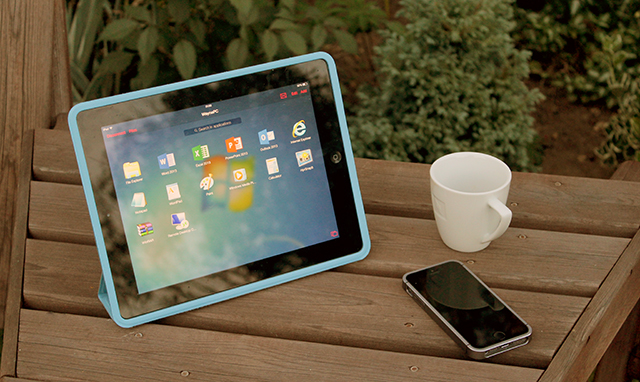
My colleague Alan Buckingham has already detailed the different hardware he switches to when the weather warms up. He makes his changes to escape his hot office environment, but I have a rather different reason for swapping devices in the summer.
I work in a basement office. It’s a very nice basement office -- it used to be a call center in the days before I moved in -- but the temperature rarely changes throughout the year down there and the lack of windows means the different seasons have very little impact on me. I’m unaware of when it’s snowing in winter, or more importantly, when it’s gloriously sunny in summer. So on days when I know the weather is nice, I move outside, so I don’t miss the sunshine, and get a welcome (and much needed) dose of vitamin D.
The Computer
I rely on my iPad to get work done. The iPad is fantastic for many things. It has a brilliant app selection, it’s great for watching movies, and viewing images. But my productivity really suffers when I switch to working on it. My Windows 8.1 PC is an absolute super-fast beast with two very large monitors. Going from that to working on a single, much, much smaller screen means I end up being far less productive. Things would likely be (slightly) better if I swapped to a Surface Pro 3, but for the moment it’s the iPad I turn to when heading outdoors.
To make using it more manageable, I rely on Parallels Access, so I can remote access my PC from outdoors. It allows me to use all the software I would normally, and I don’t have to worry about moving copies of files about or working in the cloud. Yes, there are other remote access apps available, but Parallels Access is in a league of its own as far as I’m concerned.
To ensure I have a solid internet connection, I have several TP-Link 300Mbps Universal Wi-Fi Range Extenders set up at regular intervals running from the router to my favored spot outdoors.
Entertainment
Unlike Alan, I’m not a fan of background music when I’m working and prefer to listen to the sound of birds chirping when outdoors. Working on an iPad means I have the best games at hand when it’s time for a break and I also take my Kindle Paperwhite out occasionally. Sure, I could read books on my iPad, but the experience is horrible compared to reading on a dedicated e-ink device. I'm in the process of writing another novel, and I actually copy book drafts onto the device, so I can read it there.
Other items
My iPhone goes with me everywhere, and makes the perfect companion to the iPad. I also run Parallels Access on it occasionally, and I have all the apps installed I need to save me switching between windows on the iPad. The phone alerts me to everything from news updates to incoming emails across all my different accounts, so I don’t need to stop what I’m doing to check for new messages. It functions, essentially, as the second screen I miss when outdoors.
If I need to do some serious, superfast writing -- a large article on a tight deadline or a book chapter -- I occasionally take out my old (frequently upgraded) Windows 7 Advent laptop. As much as I love the convenience of a tablet, you can’t beat typing on a proper full-size keyboard.
Photo credit: Wayne Williams
-

Mobile phone etiquette around the world
Publié: juillet 25, 2014, 10:46am CEST par Wayne Williams
People in other countries handle everyday situations in different ways, and that can make life difficult for the traveler. What might be seen as a polite action or way of behaving in one country could well be insulting in another, and it's not just customs or beliefs to be aware of.
Every nation has its own idea of what constitutes proper cell phone etiquette. In countries like the USA and UK, we know it’s not polite to do things like talk loudly on your phone in a public place, or answer a call during a movie or in a business meeting -- even if not everyone obeys these unwritten guidelines. Elsewhere around the globe, there are other rules when it comes to how and when to use the phone.
RepairLabs has come up with an infographic illustrating the many differences across the planet. As well as revealing how to answer the phone and sign off in 11 different countries, it also provides some useful details regarding phone etiquette. For example, in Thailand it’s considered rude not to answer your phone at work, and Italians usually don’t bother with voicemail.
In India, it’s fine for you to call someone well after 10pm, and obnoxiously loud ringtones are commonplace. Chinese will often answer calls even while in the middle of a face to face conversation with someone.
Take a look at the infographic below to find out more about how people in other nations behave when it comes to phone use.

-

Internet Explorer vulnerabilities have increased more than 100 percent since 2013
Publié: juillet 23, 2014, 3:23pm CEST par Wayne Williams
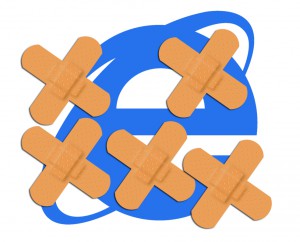 Bromium Labs today issued its "Endpoint Exploitation Trends" report that shows Internet Explorer set a record high for reported vulnerabilities in the first half of 2014, and also leads in publicly reported exploits.
Bromium Labs today issued its "Endpoint Exploitation Trends" report that shows Internet Explorer set a record high for reported vulnerabilities in the first half of 2014, and also leads in publicly reported exploits.According to Bromium, "Internet Explorer took the cap for historic high number of security patches in over a decade, and that feat was accomplished in the first six months of 2014!" It's not all bad news for users of Internet Explorer though. While the browser was easily the most exploited tool, Microsoft has been reacting much quicker to plug vulnerabilities. The company took more than 90 days to release its first patch for IE9, yet IE11’s first critical patch emerged just five days after the new browser was generally available.
Bromium says "In the first half of 2014, the growth in zero day exploitation continued unabated from 2013. Unsurprisingly, all of the zero day attacks targeted end-user applications such as browsers and productivity applications like Microsoft Office. Typically these attacks are launched leveraging users as bait using classic spear-phishing tactics. The notable aspect for this year thus far in 2014 is that Internet Explorer was the most patched and also one of the most exploited products, surpassing Oracle Java, Adobe Flash and others in the fray. Bromium Labs believes that the browser will likely continue to be the sweet spot for attackers".
Adobe Flash joins Internet Explorer as one of the most targeted products, with Action Script Sprays among the new techniques used to exploit it. Java, despite its notorious reputation, had no reported zero day exploitations in the first half of 2014, although that might be partially down to users taking action and disabling it, forcing attackers to switch their attentions elsewhere.
"End users remain a primary concern for information security professionals because they are the most targeted and most susceptible to attacks" said Rahul Kashyap, chief security architect, Bromium. "Web browsers have always been a favorite avenue of attack, but we are now seeing that hackers are not only getting better at attacking Internet Explorer, they are doing it more frequently".
The full report is available here.
-

Microsoft confirms it was working on Surface Mini
Publié: juillet 23, 2014, 1:53pm CEST par Wayne Williams
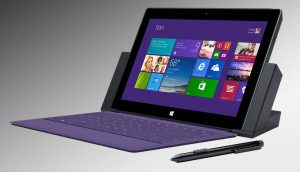 It stopped short of actually naming the device, however Microsoft has admitted it was planning to add a second new Surface to its line-up.
It stopped short of actually naming the device, however Microsoft has admitted it was planning to add a second new Surface to its line-up.Although leaks and rumors are usually best viewed with a heavy dose of skepticism, when they are as insistent as the talk regarding Surface Mini was, it’s safe to assume there’s at least some fire under all that smoke. We were fully expecting to see a seven inch version of the tech giant’s slate rolled out alongside Surface Pro 3, but there was no sign at all of it at the New York launch event two months ago. So what happened?
Well, the truth is we’ll probably never know for sure but it’s likely Microsoft got cold feet, and decided to focus on making its flagship a success before adding yet another device to the range.
The big clue confirming the device’s existence came in Microsoft's earnings report issued yesterday:
"Current year cost of revenue included Surface inventory adjustments resulting from our transition to newer generation devices and a decision to not ship a new form factor". Or in other words, a decision not to ship Surface Mini.
Just because the company decided not to roll out Surface Mini alongside the Surface Pro 3 doesn’t mean it will never see the light of day, but its future likely all hinges on how well the flagship slate sells going forward.
-

Ferrari beats Mercedes at the German Grand Prix -- in the battle of the F1 team websites at least
Publié: juillet 21, 2014, 9:25pm CEST par Wayne Williams

Sports fans are increasingly demanding a multi-channel experience, wanting all the news and all the facts on multiple devices. Website owners can’t afford to ignore this, as creating a superior user experience to that offered by rivals can mean a competitive advantage in terms of user happiness and, ultimately, website traffic.
Mobile, cloud and web performance specialist Keynote believes that not enough sites consider online performance during high-profile sporting events, and so decided to monitor and compare the performance of 11 popular Formula One constructor team web pages -- including Caterham, Ferrari, Force India, Lotus, Marussia, McLaren, Mercedes, Red Bull, Sauber, STR and Williams -- during the German Grand Prix (19-20 July). The results make for interesting reading.
Keynote tracked how performance in the race impacted the responsiveness of the website, and ranked pages in terms of average time to load and the availability of the page.
The company found that the Mercedes' constructor homepage dealt well with the attention it is likely to have received following Lewis Hamilton’s crash and Nico Rosberg’s win -- it loaded quicker than the overall average, at 4.77 seconds. Red Bull, on the other hand, was the slowest site to load overall, at 8.8 seconds. Williams, Force India and STR also experienced slowly loading web pages, at 7.23 seconds, 7.33 seconds and 8.25 seconds respectively. In terms of average load success rate, only three out of the 11 sites loaded successfully 100 percent of the time, which were Ferrari, McLaren and Sauber.
"It’s great to see that the Mercedes’ constructor web page performed well during the German Grand Prix, especially given that attention is likely to have been high, as Rosberg was competing at his home track," says Thomas Gronbach, digital quality expert at Keynote. "By contrast, we would recommend that the site owners of the constructor web pages that were slow to load -- particularly Red Bull, Williams, Force India and STR -- better prepare their sites to ensure fans receive the best possible experience. They can do this by monitoring and testing sites more rigorously, to weed out any problems that are likely to be slowing sites down, especially when the pressure comes from interested fans".
The full results were are follows:
Measurement Performance (seconds) Availability (percent) F1 - Caterham 4.75 99.93 F1 - Ferrari 4.41 100 F1 - Force India 7.33 99.72 F1 - Lotus 3.25 99.93 F1 - Marussia 2.94 99.93 F1 - McLaren 5.39 100 F1 - Mercedes 4.77 99.86 F1 - Red Bull 8.8 99.65 F1 - Sauber 5.02 100 F1 - STR 8.25 99.65 F1 - Williams 7.23 99.59 -

Microsoft looking to end bugs in software by monitoring developers
Publié: juillet 21, 2014, 1:51pm CEST par Wayne Williams

Modern programs are so complex that bugs are pretty much unavoidable, but Microsoft is looking at ways of reducing coding errors as much as possible, including trialling an experimental approach that involves monitoring developers as they work.
The idea is to track eye movements and other mental and physical characteristics of the developers, in order to spot when their alertness levels drop or they are struggling with a task -- which is when errors are most likely to creep into their work.
Microsoft researcher Andrew Begel co-authored a paper called Using Psycho-Physiological Measures to Assess Task Difficulty in Software Development which details this novel approach.
"My idea is that if the software developers are writing the code and causing the bugs, we should measure attributes of the developers themselves," Begal explains. "If we can figure out what cognitive or emotional issues lead to buggy code or lowered productivity, we can try to intervene and stop them from causing developers to make mistakes in the first place".
The researchers conducted a study of 15 professional developers to see if the idea was practical and the results were encouraging.
"We haven’t tried any interventions yet," Begel says, "but one I’ve thought about can help absent-minded developers, such as those who just came back from lunch and aren’t paying much attention to their code. If we reduce the contrast on the display and make the fonts harder to read, the developer will be forced to apply more brainpower to read and understand the code and will be less likely to slip up as a result".
Photo credit: lassedesignen/Shutterstock
-

PlayStation 4 outsells Xbox One for sixth consecutive month in the US
Publié: juillet 21, 2014, 8:44am CEST par Wayne Williams
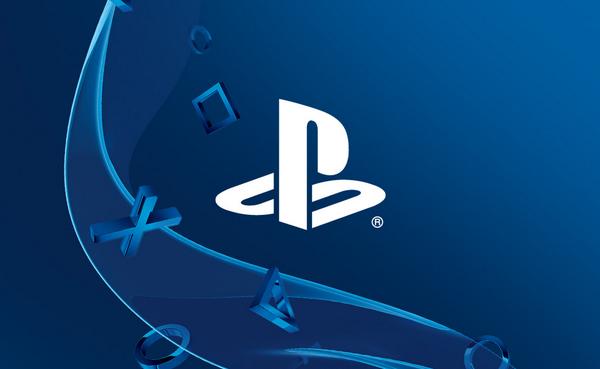
Microsoft might have seen sales of the Xbox One more than double in June, but the games console is still being outsold by Sony’s PS4, according to industry-tracking firm NPD Group.
While the uncoupling of the Kinect and introduction of a $399 base model has caused a clear sales spike it will likely be some time before we see whether that's enough to help the Xbox One catch up to its rival.
NPD Group didn’t provide any exact sales figures for either console, although it’s clear both are doing well. According to NPD analyst Liam Callahan, "Combined sales of Xbox One and PS4 are over 80 percent higher than the combined totals for Xbox 360 and PS3 -- an indication of the strength of the start of this new console generation".
NPD also says gamers spent $736.4 million on new physical gaming products in the US, including consoles, and $286.8 million on new games.
-

[Updated] Lenovo ends sales of small-screen Windows tablets in US due to lack of interest
Publié: juillet 18, 2014, 9:40am CEST par Wayne Williams
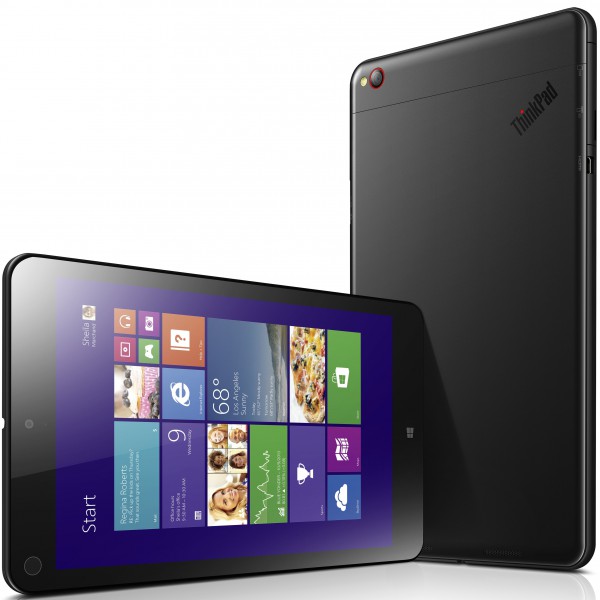
Microsoft is keen to get its tiled OS on as many devices, from as many hardware makers, as possible. It introduced the license-free Windows with Bing back in May as part of this push, but prior to that, at Build 2014, it announced it would be offering Windows for free to OEMs and ODMs on all tablets smaller than nine inches.
The dream of an army of smaller devices running Windows 8.1 has suffered a major setback now though with news that one of the largest Windows device makers, Lenovo, has decided to kill off its smaller tablets in the US, citing lack of interest.
Lenovo has confirmed it be withdrawing the ThinkPad 8, and Miix 2 8 tablets from American stores, with immediate effect, and diverting the stock to other countries.
Lenovo spokesperson Ray Gorman says, "In North America, we're seeing stronger interest in the larger screen sizes for Windows tablets and are pleased with initial customer demand for the ThinkPad 10. In other markets, particularly Brazil, China, and Japan, the demand for ThinkPad 8 has been much stronger, so we are adjusting our ThinkPad 8 inventories to meet increasing demand in those markets. If market demand for ThinkPad 8 changes, we will re-evaluate our strategy".
Brian Fagioli reviewed both Lenovo tablets. In February, he covered the Miix 2 8, which is powered by an Intel Atom Z3740 Processor and 2GB memory/64GB eMMC, and said it was a "Windows 8.1 tablet with an 8-inch screen done right". In April, he described the ThinkPad 8, which features an Intel Atom Z3770 processor and 2GB memory/64GB eMMC, as "the Rolls Royce of small Windows tablets".
Sadly, for American buyers, neither tablet is going to be available for much longer, although Microsoft currently has both devices for sale in its online store. The ThinkPad 8 is priced at $399 and Miix 2 8 is $299.
Update: Ray Gorman, Executive Director, External Communications, Lenovo, has clarified the company's position and has good news for fans of small Windows tablets.
We will continue to bring new Windows devices to market across different screen sizes, including a new 8-inch tablet and 10-inch tablet coming this holiday. Our model mix changes as per customer demand, and although we are no longer selling ThinkPad 8 in the US, and we have sold out of Miix 8-inch, we are not getting out of the small-screen Windows tablet business as was reported by the media. In short, we will continue to sell both 8 and 10 inch Windows tablets in both the US and non-US markets.
-

Xbox One sales more than doubled in June, says Microsoft -- means nothing
Publié: juillet 17, 2014, 9:24am CEST par Wayne Williams

A fan of Microsoft’s new gaming console? Prepare to rejoice. While up until now the Xbox One has been roundly thrashed by its arch rival, Sony’s PlayStation 4, it seems uncoupling the Kinect in order to allow the device to compete on price is paying dividends.
According to Microsoft, since the new Xbox One offering launched on June 9th, the company has seen sales more than double in the US, compared to May’s figures. Fantastic! But hold on… Maybe don’t start that party just yet.
While this is undoubtedly good news for Microsoft, and shows (well on paper at least) that offering a Kinect-less console was a smart move, it doesn’t really mean much, if anything. The "doubling of sales" derives from "internal data based on retail calendar and sold through numbers", yet Microsoft hasn’t released any of those actual numbers.
If those figures were great, stunning, amazing, why wouldn’t Microsoft announce them?
"More than double" means nothing. It's headline grabbing, but meaningless. Sell one console in May, and two in June, and you’ve doubled sales. Hooray!
Also, May might have been an atrocious month for the console -- the worst ever. The Xbox One might have sold incredibly poorly then, before rebounding in June. We don’t know.
The last figures we got from Microsoft were in April when it said it had sold 115,000 consoles in that month. Based on that number, it’s possible the company sold around 100,000 consoles in May, and therefore more than 200,000 of the device -- including the cheaper Kinect-less version -- in June. But that’s just a total guess.
Either way, Microsoft has clearly seen a sales spike for the Xbox One, and provided the console maintains this momentum, it might finally stand a chance of catching up with the PS4.
-

Watch Satya Nadella's keynote at the Microsoft Worldwide Partner Conference
Publié: juillet 16, 2014, 4:41pm CEST par Wayne Williams
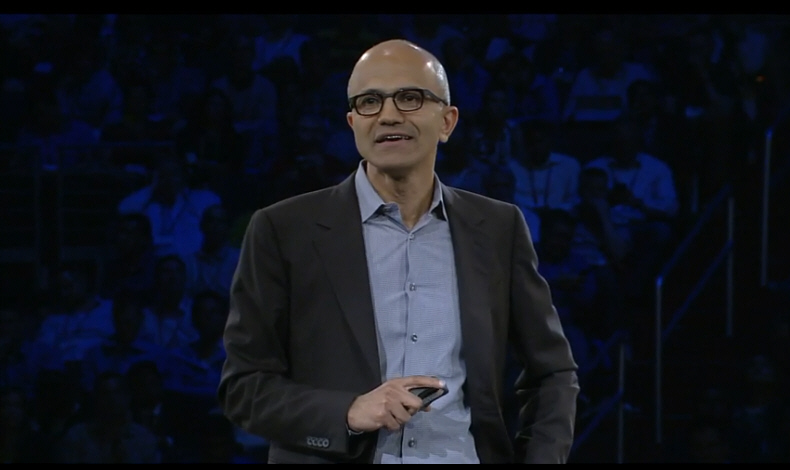
Microsoft CEO Satya Nadella is delivering a keynote today at the Worldwide Partner Conference and you watch what the tech giant’s new boss has to say here.
Monday's Vision Keynote covered a wide range of topics, including Windows Phone’s shipments, forthcoming Windows devices, and there was even some hints on what to expect from Windows 9.
Satya Nadella's presenting style is very different from that of his predecessor, Steve Ballmer, and although he hasn’t been in the job very long he’s already set out his personal vision for change and the future.
The keynote is live now, but you can watch from the start, and skip any boring bits.
Let us know what you think about what he had to say in the comments.
-

Watch the Microsoft Worldwide Partner Conference keynote here
Publié: juillet 14, 2014, 8:25pm CEST par Wayne Williams
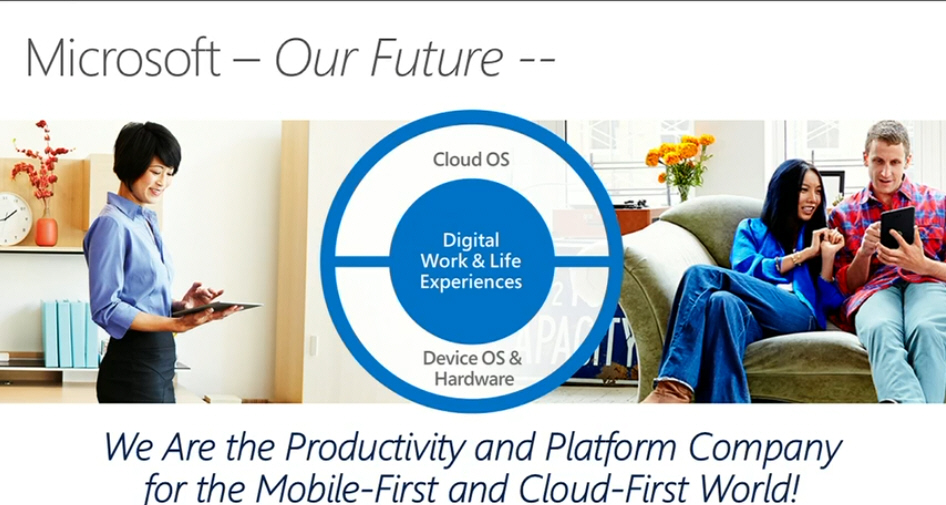
The Vision Keynote for the WPC 2014 has ended now, and Microsoft covered a wide range of topics, and even delivered some surprising news -- Windows Phone is apparently now the fastest growing mobile operating system, with more shipments than iPhone in 24 markets.
Microsoft also talked about forthcoming Windows devices, including $99 tablets, and even had some news about the next version of its operating system, Windows 9. If you didn’t attend the conference, and would like to know more about what Microsoft revealed, you can watch the keynote here. And because it’s not live, you can even skip through all the boring bits, and the music!
During the keynote, Microsoft's chief operating officer Kevin Turner told attendees that the tech giant was "really listening and taking feedback" about the next version of Windows from consumers, developers, partners and business customers, so that sounds hopeful. Windows 9 will also offer "game changing functionality for enterprise", apparently.
It sounds like more of the Windows OS functions will be moving into the cloud too, which not everyone will be pleased to hear.
It’s a wide ranging keynote, packed with lots of interesting details, and you can now watch it below.
Let us know what you think about what Microsoft had to say in the comments.
-

Wondering what Windows 9's Start menu might look like?
Publié: juillet 14, 2014, 9:39am CEST par Wayne Williams
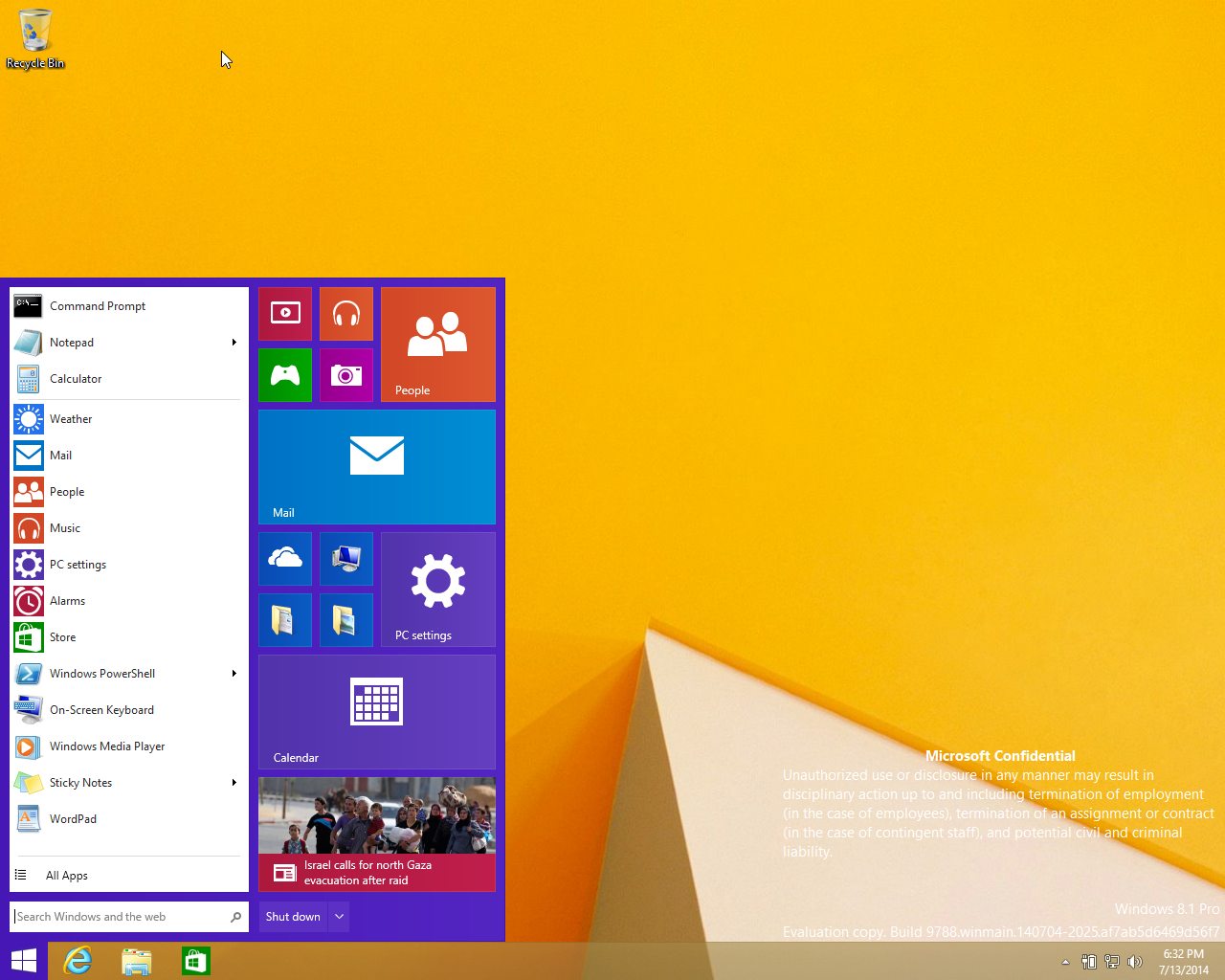
We got our first glimpse of the future Windows Start menu at this year's Build Developer Conference, but since then Microsoft has kept the much requested feature well under wraps.
Over the past couple of weeks we've seen some screens purporting to be from leaked versions of the next major Windows release. They certainly look the part, but are they the real deal?
At the start of July several websites, including the Russian Hi-Tech@mail.ru, published images claiming to show off the Start menu. There were different variations, suggesting a work in progress. However, those were quickly claimed by Lodmot, an artist on deviantART who’d mocked them up as a concept.
Then over the weekend a new, more convincing screenshot surfaced on the My Digital Life Forums. Its arrival immediately, and predictably, split users into two clear camps -- those who believe it to be a fake, and those convinced of its veracity.
It certainly looks the part -- very similar to the menu Microsoft gave us a flash of at Build, with a list of programs down the left hand side and tiles nearly arranged on the right.
Rumors suggest that the menu will only be available to desktop users, and they’ll be able to toggle the tiled part on or off.
It could be real -- an early version of the forthcoming menu (it claims to be from Windows 9 build 9788) -- or it could be a simple Photoshop job. In all honestly, give me twenty minutes and I could mock up something along the same lines. But either way, I like what I see.
Assuming it's real (a big assumption I know), what do you think of the menu?
-

Raspberry Pi introduces a new variation -- the Model B+
Publié: juillet 14, 2014, 9:07am CEST par Wayne Williams

We’re big fans of the Raspberry Pi here at BetaNews. The popular (not to mention super-affordable) credit card-sized ARM GNU/Linux computer was designed to bring programming back into schools but has quickly found an audience way beyond that.
The Pi is available in two variations -- the $25 Model A, which comes with just the one USB port and no Ethernet, and the more advanced $35 Model B with Ethernet and two USB ports. Today, however, there’s a third choice -- the Model B+.
Arriving two years after the Model B, the B+ uses the same BCM2835 application processor, and comes with the same amount of RAM (512MB) and the same software. So what’s different? The Raspberry Pi Foundation lists the following key improvements:
- More GPIO. The GPIO header has grown to 40 pins, while retaining the same pinout for the first 26 pins as the Model B.
- More USB. There are now 4 USB 2.0 ports, compared to 2 on the Model B, and better hotplug and overcurrent behavior.
- Micro SD. The old friction-fit SD card socket has been replaced with a much nicer push-push micro SD version.
- Lower power consumption. By replacing linear regulators with switching ones power consumption has been reduced by between 0.5W and 1W.
- Better audio. The audio circuit incorporates a dedicated low-noise power supply.
- Neater form factor. The USB connectors have been aligned with the board edge, composite video moved onto the 3.5mm jack, and four squarely-placed mounting holes have been added.
The B+ will be made available alongside the Model B (there will be some stock to clear, but the Raspberry Pi Foundation says it will also keep the Model B in production for as long as there’s demand).
You can buy the new model from Farnell/element14/Newark, or RS/Allied Components.
-

Raspberry Pi introduces an improved model -- the Model B+
Publié: juillet 14, 2014, 9:07am CEST par Wayne Williams

We’re big fans of the Raspberry Pi here at BetaNews. The popular (not to mention super-affordable) credit card-sized ARM GNU/Linux computer was designed to bring programming back into schools but has quickly found an audience way beyond that.
The Pi is available in two variations -- the $25 Model A, which comes with just the one USB port and no Ethernet, and the more advanced $35 Model B with Ethernet and two USB ports. Today, however, there’s a third choice -- the Model B+.
Arriving two years after the Model B, the B+ uses the same BCM2835 application processor, and comes with the same amount of RAM (512MB) and the same software. So what’s different? The Raspberry Pi Foundation lists the following key improvements:
- More GPIO. The GPIO header has grown to 40 pins, while retaining the same pinout for the first 26 pins as the Model B.
- More USB. There are now 4 USB 2.0 ports, compared to 2 on the Model B, and better hotplug and overcurrent behavior.
- Micro SD. The old friction-fit SD card socket has been replaced with a much nicer push-push micro SD version.
- Lower power consumption. By replacing linear regulators with switching ones power consumption has been reduced by between 0.5W and 1W.
- Better audio. The audio circuit incorporates a dedicated low-noise power supply.
- Neater form factor. The USB connectors have been aligned with the board edge, composite video moved onto the 3.5mm jack, and four squarely-placed mounting holes have been added.
The B+ will be made available alongside the Model B (there will be some stock to clear, but the Raspberry Pi Foundation says it will also keep the Model B in production for as long as there’s demand).
You can buy the new model from Farnell/element14/Newark, or RS/Allied Components.
-

Selling a smartphone? Here's how to securely wipe your personal data
Publié: juillet 11, 2014, 1:24pm CEST par Wayne Williams
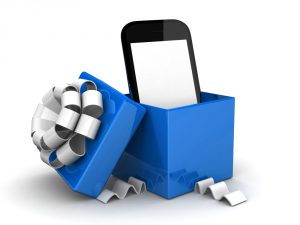 As a test, Avast purchased 20 used and supposedly wiped Android phones and discovered that it was able to recover vast amounts of personal user data. My colleague Brian Fagioli reported the story here.
As a test, Avast purchased 20 used and supposedly wiped Android phones and discovered that it was able to recover vast amounts of personal user data. My colleague Brian Fagioli reported the story here.Google responded to the news, stating "This research looks to be based on old devices and versions (pre-Android 3.0) and does not reflect the security protections in Android versions that are used by the vast majority of users". It went on to offer users advice on how to make sure when selling an old mobile phone you aren’t also gifting your personal data to buyers.
Google says would-be sellers should "enable encryption on your device and apply a factory reset beforehand; this has been available on Android for over three years".
Simply performing a factory reset on its own won’t prevent your data from being recovered.
What you need to do is go into Settings > Security and select 'Encrypt device'. Anyone who tries to access your data will need to enter a password. With that done, you can then use the factory reset option to wipe the device and return it to its default settings.
Alternatively, there are several Android apps available that can securely erase your data and prevent recovery.
Secure Deletion for Android ($2.75) forces your Android phone to overwrite sections of storage so the data kept there cannot be recovered.
Nuke My Device ($0.99) deletes everything on your internal SD card, then writes encrypted data to the entire partition, before wiping that data.
Avast Anti-Theft offers an option to wipe memory to keep your private data safe.
Secure Erase with iShredder 3 will wipe and securely erase the freespace of your device.
iOS users can go to Settings > General > Reset > Erase all Content and Settings. iShredder 3 used to offer users a secure way of fully wiping an iOS device, but Apple has since removed this from the App Store.
Photo credit: Evgin/Shutterstock
-

Best iOS apps this week
Publié: juillet 4, 2014, 11:47am CEST par Wayne Williams

Twenty-fifth in a series. The App Store saw some excellent releases this week, including two expensive games (by App Store standards) which are well worth the asking price, a powerful email client, a fun, modern day take on an old arcade classic, a superb journaling tool, and an app which can help you take back control of your digital identity.
In other news, all three Infinity Blade games are on sale this holiday weekend. The original Infinity Blade is now $0.99, Infinity Blade 2 is $1.99 and Infinity Blade 3 is priced at $2.99. If you don’t have any or all of these games, now is your chance to right that wrong.
As always, if I miss an app that you think should definitely have been included, let me know in the comments below, or drop me an email.
Here is my selection for this week.
Paid App of the Week
Civilization Revolution 2 ($14.99)
Yes it’s pricey, but if you’re a fan of Sid Meier’s Civilization, and/or Civilization Revolution, the 2008 PC original, you’re going to want this game.
The aim is to build a glorious empire that will stand the test of time and the game offers updated 3D graphics, new units, tech, buildings and wonders, as well as historic events and battles available in the Scenario Challenges mode.
Free App of the Week
The cloud-based desktop email client for Mac and Windows is now available as a mobile app for iPhones. It’s geared toward helping you save time by organizing all of your email accounts into one, simple interface.
The app includes standard email features, like sorting email by day, author and message size, and introduces something new -- sorting your email by personal relevance through Inky’s advance algorithms, determining what messages users will want to read, and ranks them first.
Other Apps
Demolition Lander: Universe ($3.99)
This game offers a destructive twist on the classic Atari arcade game Lunar Lander. Instead of attempting to land your craft peacefully, you now get to destroy everything in your way. You can fully customize your ship, and there are multiple ships and locations available, as well as obstacles to avoid including black holes, natural danger zones, airspace mines and anti-aircraft missiles.
Extra planets and levels, and multiplayer options are planned for future releases.
This app will help you take back control of your digital identity. It lets you see what information you’re sharing via social networks, websites and apps, and make changes to boost your privacy. There’s also a Personality section which connects to your Facebook account and shows how advertisers, data brokers and others might see you. Are you conservative or liberal, spontaneous or organized, reserved or outgoing, or calm or stressed? The app will tell you.
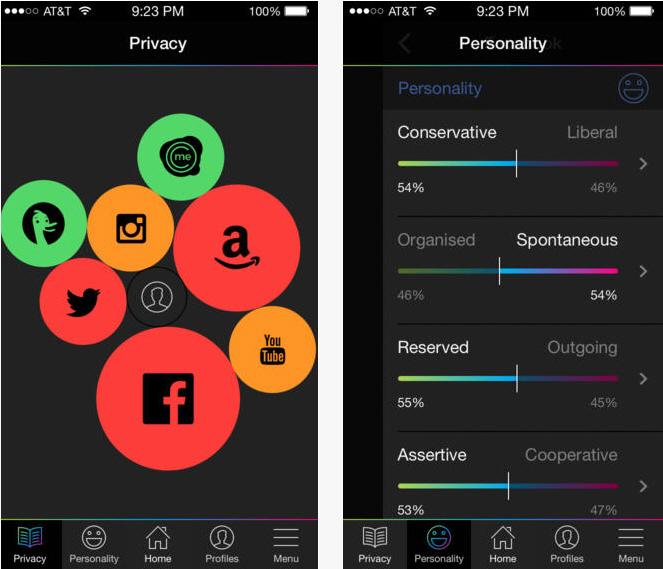
The latest update to Yummly’s iOS app lets you sync your shopping list between devices (this is apparently the most requested feature). Additionally, there’s a recipe suggestion option where users will get ideas of what to make with the ingredients right within the shopping list.
Monster Hunter Freedom Unite ($14.99)
A hunting game from Capcom, the aim is to take on quests and slay monsters. As you progress you earn money which you can use to get bigger and better weaponry which will help you master even bigger challenges.
You can play on your own with up to four friends over Wi-Fi. If you’re stumped on a quest, just call for backup!
Apple’s App of the Week
Apple’s free app this week is a diary/journal tool that usually comes with a $4.99 price tag. Day One has a smart, clean interface and offers a range of useful features including a full screen mode, privacy passcode lock, customized writing reminders, location and weather data, and the ability to search by keyword and create tags and hashtags. You can star favorite entries, and share content with friends and family.
Day One keeps your entries in sync across platforms via iCloud.
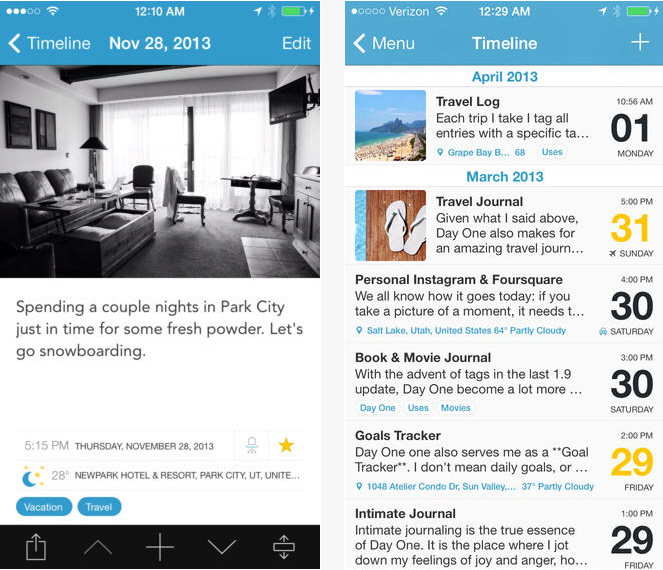
-

Windows 8.1 update woes? A fix is on the way
Publié: juillet 4, 2014, 11:03am CEST par Wayne Williams

Take a look at the monthly market share stats for Windows and you’ll see a good proportion of Windows 8.x users are still on the original version of the tiled OS. For some it’s a matter of choice, for others it’s because they simply can’t update to Windows 8.1.
A large number of users have experienced the dreaded Blue Screen of Death when attempting to perform the update to Windows 8.1, which has resulted in them being unable to complete the process. Fortunately, Microsoft has a fix to address the issue.
The automatic update, which is still in testing in "select markets" reportedly solves the problem and allows Windows 8.0/RT 8.0 users to (at long last) complete the upgrade.
"This [Windows RT] pilot program is an example of ways we're experimenting to help ensure more of our customers benefit from a continuously improving Windows experience," a Microsoft spokesperson told Paul Thurrott. "Similar to how the Windows 8.1 Update [1] process works today, the pilot program will automatically update consumer Windows 8 and Windows RT machines for free to Windows 8.1 Update and Windows RT 8.1 Update in select markets".
If you’re one of the affected customers, keep checking Windows Update for the fix. Thurrott points out the RT version of Windows 8.1 can be downloaded from the Microsoft Support website and installed manually now. Windows 8.0 and Windows RT 8.0 users will first need to install update 2871389 before applying the Windows 8.1 update.
Image Credit: Syda Productions/Shutterstock
-

Almost 1 in 5 websites now blocked by censorship filters in the UK
Publié: juillet 2, 2014, 3:59pm CEST par Wayne Williams

Browse the web in the UK, and sooner or later there’s a good chance you’ll stumble across a website that’s been blocked. Sites like The Pirate Bay, Fenopy and H33t are no longer viewable due to court orders preventing access, and other sites -- many perfectly legitimate -- are being blocked by censorship filters.
It’s not quite as bad as living in China, but according to a new project by the Open Rights Group, ISPs are currently blocking 19 percent of tested websites.
The Blocked project is an online tool that lets you check whether a website is being censored by filters. So far it has checked over 105,000 websites, and disturbingly found over 20,000 which have been blocked by one or more ISPs.
The filters are designed to prevent children and young people from viewing content aimed at over 18s, including pornography and sites that talk about alcohol, smoking, anorexia and hate speech.
However, the Open Rights Group says the filters are routinely blocking sites which are not harmful to children -- sometimes seemingly by mistake, and at other times deliberately.
Executive Director of Open Rights Group, Jim Killock said: "Through, the Blocked project we wanted to find out about the impact of web filters. Already, our reports are showing that almost 1 in 5 websites tested are blocked, and that the problem of overblocking seems much bigger than we thought. Different ISPs are blocking different sites and the result is that many people, from businesses to bloggers, are being affected because people can’t access their websites".
One of the blocked sites is the political blog, Guido Fawkes whose Editor Paul Staines quipped: "We would really appreciate it if TalkTalk would remove us from their block list. The only people who block us are them and the Chinese government".
Other sites found to be blocked include a feminist rights blog and a Porsche dealership.
UK users can check to see if a website has been blocked by filters using the free checking tool at www.blocked.org.uk. It tests services from 3, Andrews & Arnold, BT, Everything Everywhere, O2, Plusnet, Sky Broadband, TalkTalk, Virgin Media and Vodafone.
Photo Credit: Rommel Canlas/Shutterstock
-

Windows 8.x goes into reverse gear -- loses market share as both Windows 7 and XP show growth
Publié: juillet 1, 2014, 10:50am CEST par Wayne Williams

I’ll be honest, although Windows 8.x losing market share is a shocking state of affairs -- and a new low for an operating system which has struggled since launch -- it’s something that’s been coming for a while. Windows 8 has been dropping share since Windows 8.1 arrived, and Windows 8.1 has been growing at such a glacial pace it was only a matter of time before the losses outweighed the gains, and that’s exactly what happened in June according to NetMarketShare.
In a month where Windows 7 and Windows XP -- the OS that refuses to die -- both gained market share, "new Windows" shifted into reverse gear and began shedding users.
The loss is minimal -- Windows 8 dropped 0.36 percent and Windows 8.1 gained 0.26 percent, so the aggregate is a drop of just 0.1 percent, but even so. Windows 8.x is the only easily obtainable Windows operating system, and it comes pre-installed on pretty much every new PC. Microsoft has made wholesale changes to try and get people interested in the tiled OS, and it’s just not happening.
Let’s not pretend otherwise, a drop in market share of any size -- any amount -- is a disaster for Microsoft’s new OS. You can blame the better weather (for those in the northern hemisphere), you can blame the World Cup (both have an impact on tech sales and use) but that argument doesn’t really hold water as 8.x is the only OS to drop share in June. That said, there is age to take into account. Windows 8.x users are likely to be slightly younger than users of older operating systems (less averse to change), and therefore more likely to switch from a PC to a non-Windows tablet at this time of year.
But even so.
Elsewhere Windows 7 managed to gain just under half a percentage point (0.49 percent) going from 50.06 percent in May to 50.55 percent in June, cementing its position as the fastest growing operating system. Imagine how well it would be doing if it was more readily available.
Windows XP went from 25.27 percent in May to 25.31 percent in June, for a 0.04 percent gain. Yes, it’s a minuscule amount, but again even so. This is a 13 year old discontinued operating system -- folks should be jumping from it like rats leaving a sinking ship, but despite the huge unmissable Windows 8.x lifeboats everywhere, users would appear to be happier to take their chances than leap aboard the new OS, which is crazy.
And while Windows 8.x is lying bleeding on the floor I’m afraid I have to deliver one last kick to the head. In June, Windows Vista -- yes, bloody Vista -- gained 0.5 percent market share. Twice as much as Windows 8.1. Oh dear.
It will be interesting to see how the tiled OS fares next month. Statistical anomaly or downward trend? Place your bets…
//
Photo Credit: Pieter De Pauw/Shutterstock
-

Best iOS apps this week -- Ministry of Silly Walks edition
Publié: juin 27, 2014, 12:33pm CEST par Wayne Williams
 Twenty-fourth in a series. Apple refreshed its aging iPod touch lineup this week, introducing a new 16GB model with an iSight camera, and lowered the price of the existing models. If you’ve been tempted to pick up an iPod touch, but were put off by the price, now is the time to go for it.
Twenty-fourth in a series. Apple refreshed its aging iPod touch lineup this week, introducing a new 16GB model with an iSight camera, and lowered the price of the existing models. If you’ve been tempted to pick up an iPod touch, but were put off by the price, now is the time to go for it.The App Store saw some excellent releases this week, including a free app which lets you store unlimited photos and videos in the cloud, a Ministry of Silly Walks game voiced by John Cleese, a travel app that covers everything from planning to booking, an origami based puzzle game, and a slot machine that lets you put pictures of friends and family on the reels. And that’s just for starters!
As always, if I miss an app that you think should definitely have been included, let me know in the comments below, or drop me an email.
Here is my selection for this week.
Paid App of the Week
Monty Python's The Ministry of Silly Walks ($0.99)
I’m going to be seeing Monty Python in London next week, so this game couldn’t have arrived at a better time for me.
The aim is to unleash your silly walk across London, while dodging dangerous obstacles and collecting gold coins. Randomized objects and scenery ensure each game is different and you can spend the coins you bank on sillier suits and power-ups.
The game is voiced by the Minister of Silly Walks himself, John Cleese.
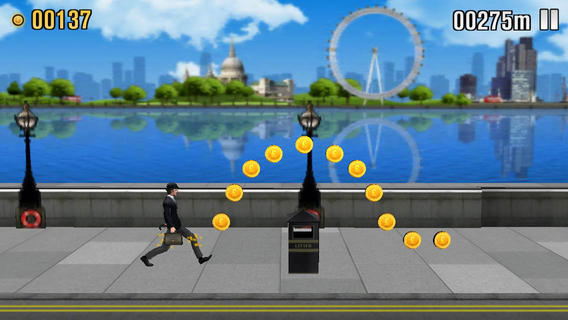
Free App of the Week
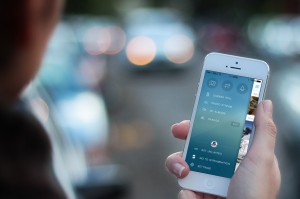 Shutter is an infinite camera app from StreamNation that automatically syncs with an unlimited cloud storage account, eliminating the need to constantly delete content in order to free up space for new photos and videos.
Shutter is an infinite camera app from StreamNation that automatically syncs with an unlimited cloud storage account, eliminating the need to constantly delete content in order to free up space for new photos and videos.All the photos and videos you take using it are directly uploaded to the cloud (you can set the app to just use Wi-Fi), but the most recent ones are always available for viewing offline. The app lets you set the number of photos stored on your phone to 0, 200, 500, or 1GB.
Your media can be retrieved whenever you like and downloaded in its original format. Photos and videos currently stored on your phone are also automatically uploaded to the cloud, making it even more useful.
Shutter is completely free with no in-app purchases and offers unlimited storage as well as unlimited sharing over most social networks with no size restrictions. It also offers a range of filter choices, album management, and background upload.
Other Apps
Jellies ($1.99)
This handcrafted game is all about catching jellies -- with bombs, clocks and electroshock.
Join Bob the Fisherman as he embarks on a heroic quest to retrieve his fingers from the wicked jellies that have bitten them off. Traverse the high seas, navigate through arctic glaciers and plunge beyond the ocean depths.
The aim is very simple -- you have to catch as many jellies as you can in 60 seconds, using power-ups to boost your score and time.
Offers in-app purchases.
Minube’s app (now available for iPad) is designed to act as a complete travel-planning tool and cover the entire process from inspiration to booking hotels, including arranging last-minute reservations.
Minube has over 1 million registered travelers providing tips and photos on over 600,000 points of interest around the world. You can use it to discover new destinations and find hotels, restaurants, activities, and interesting things to see and do
The app lets you see places on an interactive map and save favorites into lists which can be shared via email or over social networks.
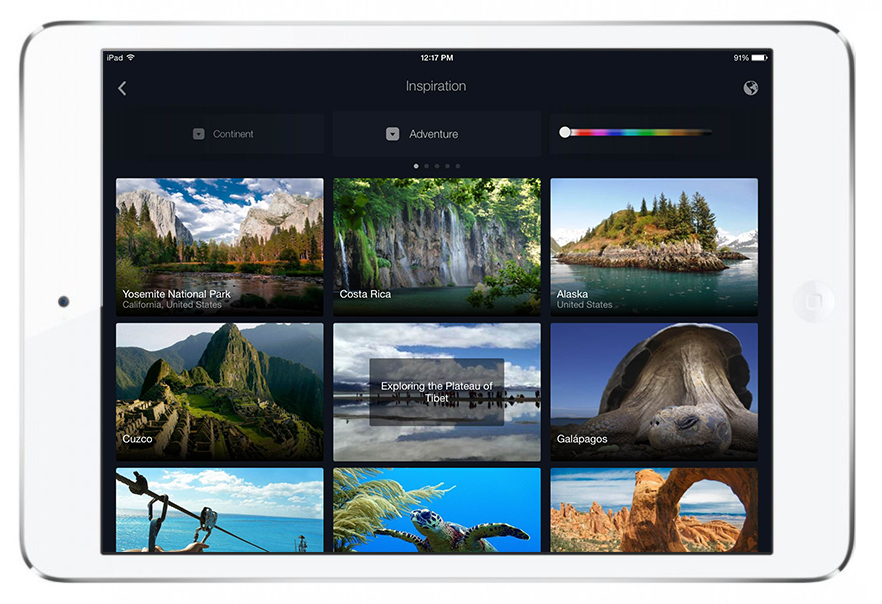
Offers in-app purchases.
Picto Slots is a slot machine game with a difference -- users import photos of their family, friends and/or pets to be the game characters. There are eight different slot themes and you can manually stop the reels, earn bonus games and free spins, and play up to 25 pay lines. There are also daily bonus offers and an auto-spin feature.

You can trade items such as home goods, fashion finds, or kids’ gear directly via this new app.
Swapdom finds swaps for you based on requests and offers, with no negotiation needed. You simply request the items you want, tell Swapdom what would like to offer in exchange, and it does the rest.
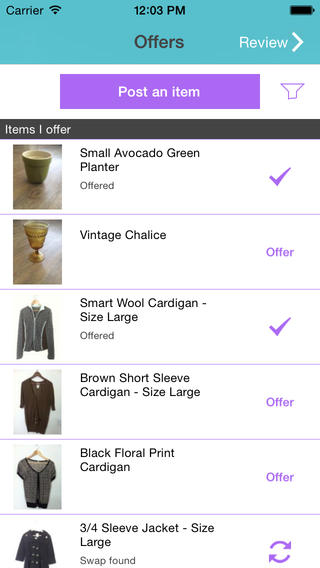
This app lets shoppers find the deal they want and obtain savings through the checkout process by copying and pasting the coupon code from Savor’s site or app. Online shoppers can share Savor’s offers with friends via all the usual social media sites. The updated version sports a new UI and offers sorting by deal type and expiration date. It also offers improved search.
Offers in-app purchases.
A fun origami based puzzle game in which you have to fold sheets of paper in order to create origami figures, working as accurately as possible to fit the form, and avoiding using too many folds. There are 70 puzzles to tackle.
Apple’s App of the Week
Captain America: The Winter Soldier
Offers in-app purchases.
Apple’s free app this week is a quality Gameloft movie tie-in. Originally released three months ago, and priced at $2.99, the official game of the Marvel movie blockbuster lets you play as Captain America and lead a S.H.I.E.L.D. Strike Team against several nefarious criminal organizations. The game offers fun tactical action gameplay, and asynchronous multiplayer so you can join a clan and battle rival players.
The graphics have a stylish comic book look to them.
-

Apple introduces a new 16GB iPod touch with iSight camera
Publié: juin 26, 2014, 3:14pm CEST par Wayne Williams
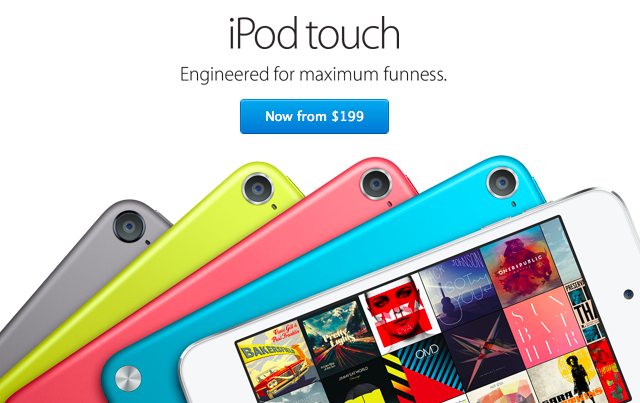
Last week Apple quietly introduced a new entry-level iMac. This week it’s added a new entry-level iPod touch to the Apple Store, and slashed the price of existing models.
The new iPod touch comes with 16GB of storage, a 5-megapixel, 1080p rear iSight camera and color-matched wrist strap loop. It’s priced at $199. The price of the 32 and 64GB models have been slashed to $249 and $299 from $299 and $399 respectively.
Apple previously offered a 16GB iPod touch, but it cost more and didn’t have the camera or strap.
The new device is available in the usual color choices -- black, space gray, pink, yellow, blue, and (Product)RED.
The new 16GB iPod touch is available to buy through the Apple Store now and comes with free shipping and engraving.
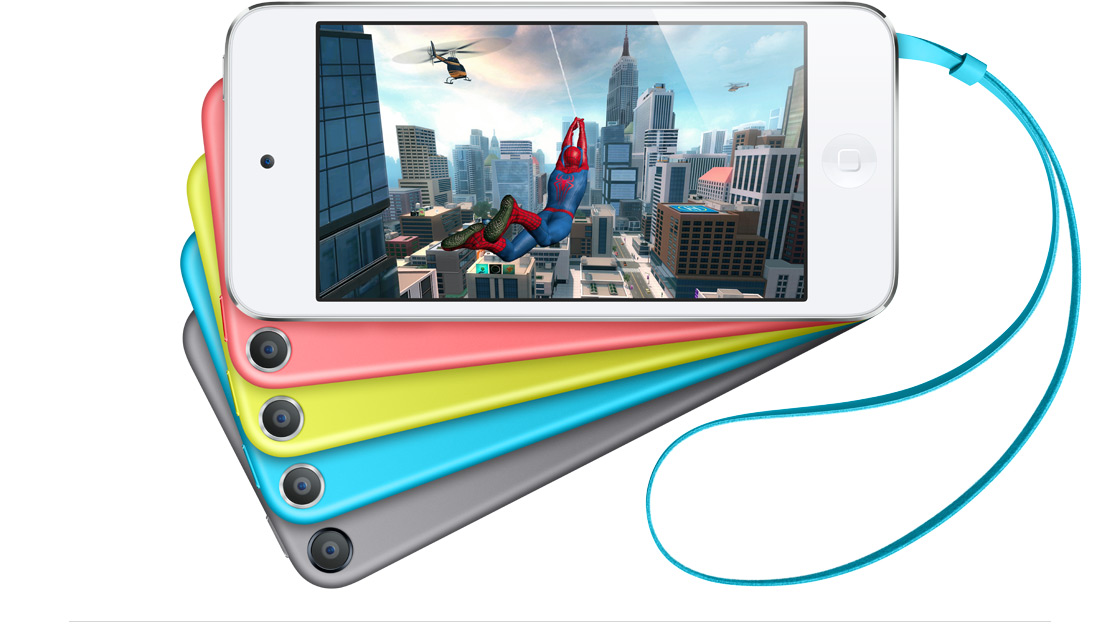
-

Google revs up Android Auto, its Apple CarPlay rival
Publié: juin 25, 2014, 9:53pm CEST par Wayne Williams
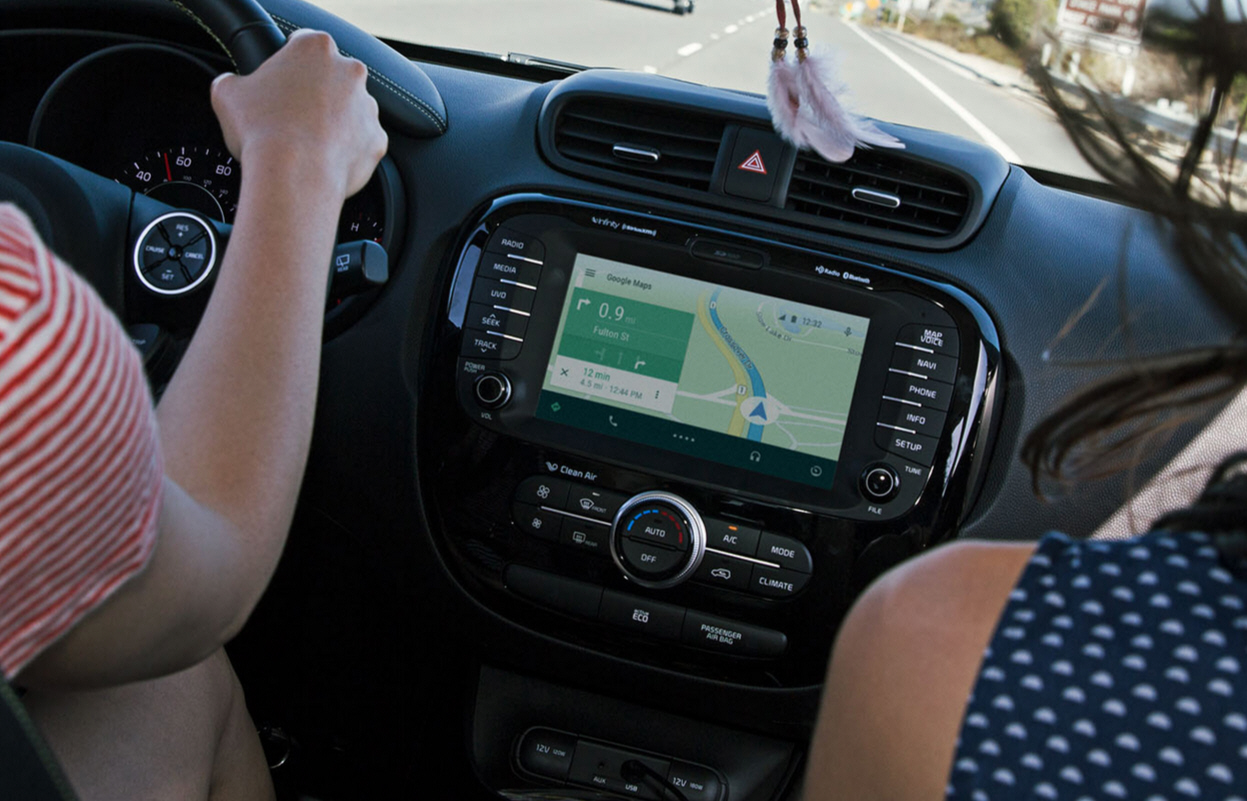
As expected, one of the big new announcements at Google’s I/O conference was Android Auto which takes Google’s mobile operating system into vehicles.
Android Auto runs on your smartphone but the apps and features are mirrored and can be controlled through a touchscreen in the vehicle. The car-specific interface is a simplified version of the forthcoming (and unnamed) Android L release, with larger less distracting 'touch targets'.
You can interact with Android Auto by touch, through in-car controls, or voice -- all of which makes it a lot safer than fumbling about with your phone when you get a text message -- and the platform can be used to control navigation, music and messaging.
Like Google Now it uses contextual awareness to display information you might want to know at just the right time -- such as reminders when you get close to work or home. And because it’s all linked to your phone, you’ll get these reminders whether you’re inside or outside the vehicle.
Google says the Android Auto SDK will be made available to developers "soon" and the company has lined up 28 automakers and tech companies, including Fiat, Volvo, Volkswagen, Audi, Nissan and Mitsubishi, as part of the Open Automotive Alliance. The first compatible vehicles are expected to roll off the production line this fall.
Apple announced its own similar in-car system, CarPlay, four months ago. It will be interesting to see how the two competing platforms do and does beg the question if you switch from an iPhone to an Android, or vice versa, will you need to change cars? Or choose a vehicle based on your smartphone preference? Although there's been no word yet, I'd expect to see car makers opt to simply incorporate both systems in future vehicles.
-

Watch the Google I/O 2014 keynote here
Publié: juin 25, 2014, 2:22pm CEST par Wayne Williams

It's a big day for Google as the search giant's annual developer conference kicks off with what promises to be a very exciting keynote.
So what can we expect Google to unveil later today? Well it’s a good bet we’ll be treated to news of Android 5.0 Lollipop (or some other sweet beginning with L -- Liquorice, Lemon Meringue Pie, Lion Bar, or Lifesavers are possibilities too). Hardware that might be announced include a new Nexus 10, the Nexus 8, Google Android Wear watches, Google Project Tango tablets, the modular Project Ara smartphone, the Google Auto Link in-car system, and a set top box to rival Apple TV.
If you haven’t got an invite to attend the event at the San Francisco's Moscone Center West, or you’ve got something else going on -- like work, for example -- don’t worry. As always you’ll be able to watch events unfold here.
The keynote begins at 9am PDT/12pm EDT/5pm BST. It's scheduled to run for two hours, but don't be surprised if it goes on a bit longer than that.
You can also catch up on Google I/O on the events page. Or download the official Android app which will let you watch the live stream on the go.
What are you expecting/hoping to see announced today?
-

One in five businesses are still using Windows XP despite the risks
Publié: juin 18, 2014, 4:52pm CEST par Wayne Williams
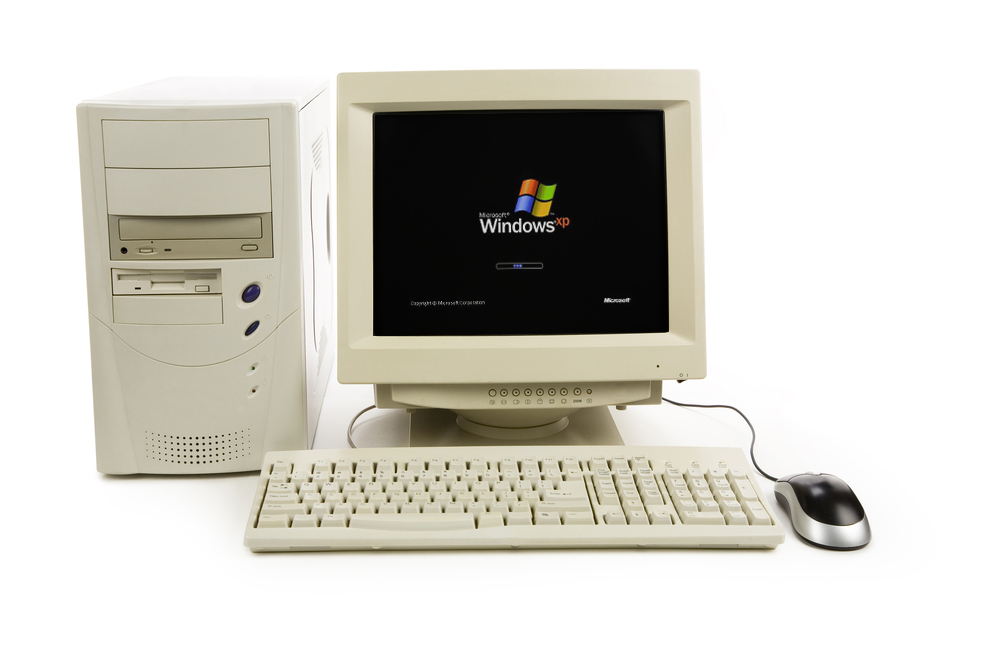
Microsoft ended support for XP two months ago, yet consumers are still proving resistant to change, and many businesses are similarly reluctant to upgrade to a newer version of Windows.
According to security firm Bitdefender, which conducted a three-month global study into the operating system use of small and medium businesses, nearly 19 percent of firms, or almost one in five, are sticking with the aging XP despite security concerns.
The study looked at companies in sectors such as education, industry, retail and medical, and according to Bitdefender, one web marketing business had to deal with almost 800 million malware attacks in the three month analysis period as a result of its refusal to upgrade.
Although Microsoft no longer provides support for XP, many firms seem unfazed by the risks.
"A few weeks after the end of support announcement, a new Internet Explorer zero-day vulnerability turned into a permanent threat for XP users," Bitdefender Chief Security Strategist Catalin Cosoi said. "That was until folks at Microsoft issued a patch that was made available for Windows XP users as well. However, this was an exception that shouldn’t make enterprises believe it will happen again, so the migration from XP is a must".
The study, which was conducted from March to May 2014, showed that 53.4 percent of the 5,000+ companies analyzed now run Windows 7 Professional. Only a small percentage of the SMBs were found to be running other Windows versions such as Windows 7 Home Premium, Windows 7 Ultimate and Windows 8.1 Pro.
Bitdefender’s study also reveals an impressive, and frankly staggering statistic -- 13 percent of employees admitted to still being able to access systems at a previous work place using old credentials.
Image Credit: Nomad_Soul / Shutterstock
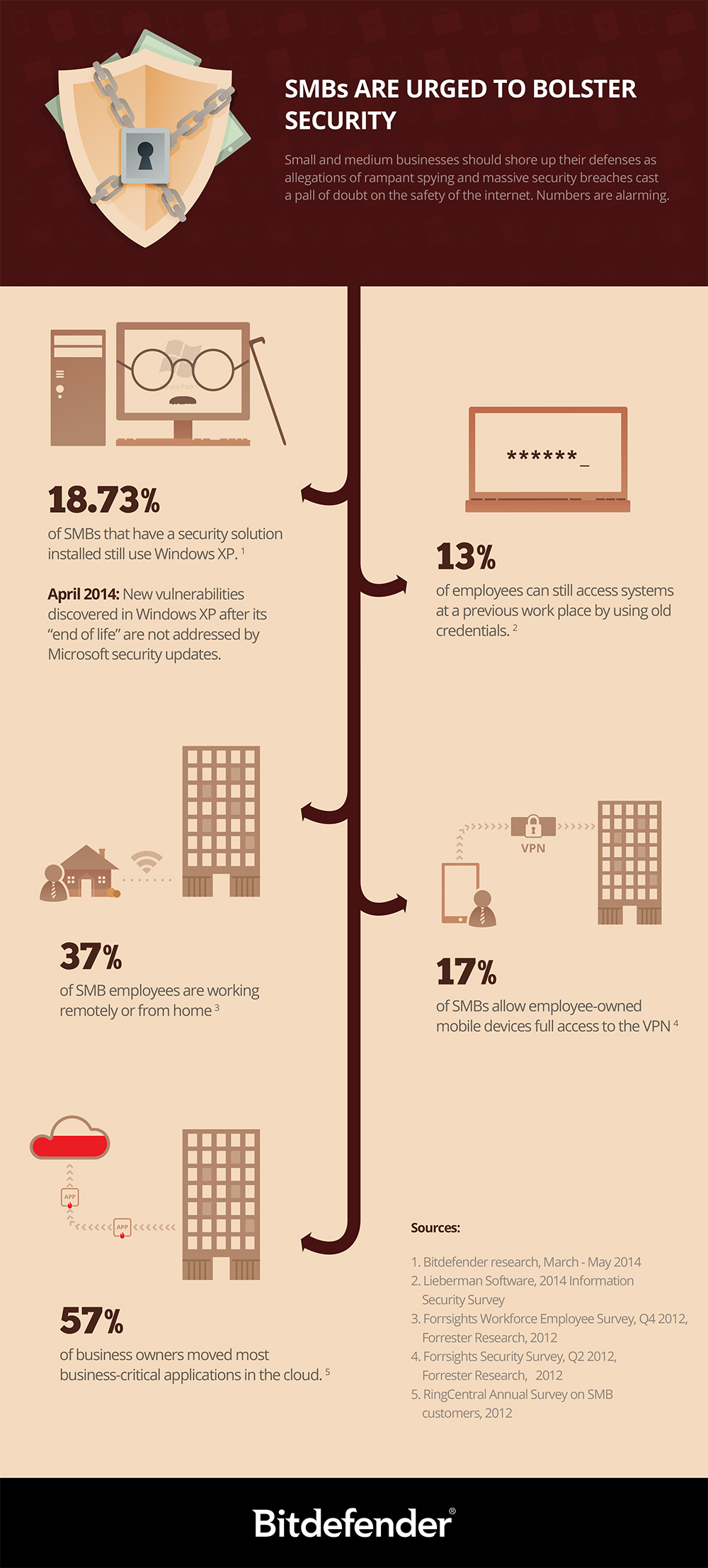
-

Apple introduces a new entry-level iMac
Publié: juin 18, 2014, 2:53pm CEST par Wayne Williams

If you’re in the market for a new Apple computer, but can’t afford a top of the line model, you’ll be pleased to know Apple has today rolled out a new entry-level iMac.
The new system is available now and comes with a 21.5 inch screen, 1.4 GHz dual-core Intel Core i5 processor, 8GB of memory, a 500GB hard drive and Intel HD Graphics 5000.
It’s priced at $1,099, which is $200 cheaper than the next model (which offers a 2.7GHz quad-core Intel Core i5 processor and a 1TB hard drive).
Configuration options let you boost the iMac’s storage to 1TB for an additional $50, or you can select a 1TB Fusion Drive, (or add 256GB of Flash storage) for an extra $250.
It’s obviously not the most powerful iMac, but if you’re not too worried about performance, it’s certainly a decent choice for the home.
Does it appeal to you?
-

Best iOS apps this week
Publié: juin 13, 2014, 12:38pm CEST par Wayne Williams
 Twenty-third in a series. It will come as absolutely no surprise to anyone that with the World Cup now underway loads of new and improved football/soccer offerings have arrived in the App Store. There are games, so you can practice your (virtual) skills, and apps that let you follow the matches and your team's progress through the tournament. The official FIFA World Cup app is one of the better choices.
Twenty-third in a series. It will come as absolutely no surprise to anyone that with the World Cup now underway loads of new and improved football/soccer offerings have arrived in the App Store. There are games, so you can practice your (virtual) skills, and apps that let you follow the matches and your team's progress through the tournament. The official FIFA World Cup app is one of the better choices.Away from football, the App Store saw the release of two long awaited new games -- Angry Birds Epic, a new RPG featuring Rovio's famous characters, and Broken Age, a graphic adventure from legendary game designer Tim Schafer. There's also an app that lets you transform iOS devices into audio speakers, a hotel guide, and a speed reading app, to mention just some of the latest releases.
As always, if I miss an app that you think should definitely have been included, let me know in the comments below, or drop me an email.
Here is my selection for this week.
Paid App of the Week
Broken Age ($9.99)
The first graphic adventure by Tim Schafer in sixteen years was funded on Kickstarter (they sought $400,000 and ended up with over $3.3 million in pledges) and is now available on iPad.
The game is described as a "timeless coming-of-age story of barfing trees and talking spoons" and follows two teenagers in very different worlds. You can switch between the two protagonists and control their lives.
This is just part one of the story. Part two will be available as an in-app purchase when it's released.
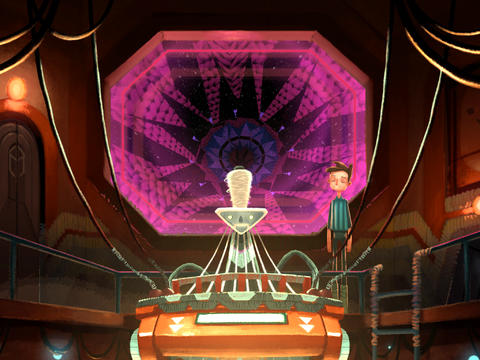
Free App of the Week
Offers in-app purchases.
Angry Birds is an incredibly successful franchise, and Rovio’s latest game in the series is a free RPG with turn based battles, weapons, magic and silly costumes. You control the birds, battle the piggies, and can upgrade your heroes as you explore Piggy Island.
If you’re a fan of the Angry Birds you won’t want to miss this one.
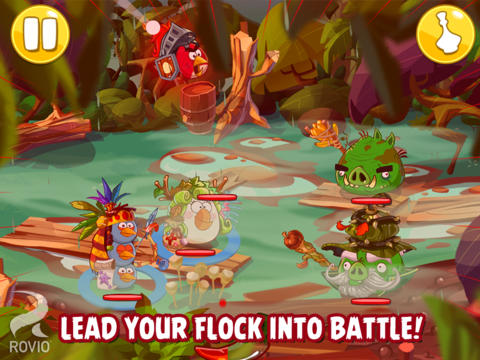
Other Apps
If you have more than one iOS device (or you have friends and family with iPhones and iPads) you can use this app to transform the devices into a wireless surround sound system.
You can create a playlist of songs from your own library, control volume across all devices, and use filters to change the pitch of the music.
No internet connection is required and the music is kept fully in sync across devices.
Offers in-app purchases.
This is a football themed vertical running game in which the aim is to score lots of goals and defeat rival national teams. You play as your own nation (there are 26 countries on offer), and there are two basic balls available and 6 different purchasable balls.
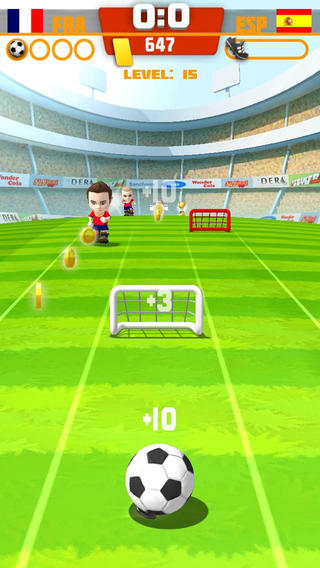
Thinking of taking a city break? This app suggests 10 great hotels for any trip. You can select the style of hotel you want, see the latest tips and reviews, save hotels for later, and compare prices across all the major booking sites.
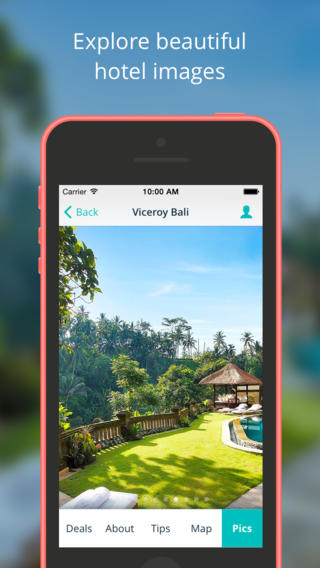
Scanbot 2 ($1.99)
Scanbot transforms your iPhone into a full scanner in your pocket. It can create JPG or PDF scans that can be sent via email, or uploaded to the likes of Dropbox, OneDrive, Google Drive, or Evernote.
The new version offers iPad support and can now scan QR codes.
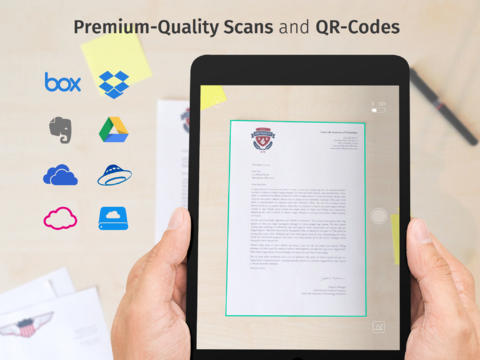
This sports app provides (near) real-time photo coverage and results notifications for all of the world’s major sporting events. Obviously the World Cup is front and center at the moment, but it also covers the Tour de France, Hungarian Grand Prix and US Open Tennis.
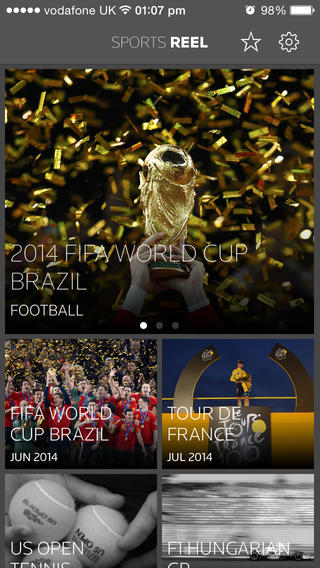
Apple’s App of the Week
Offers in-app purchases.
Apple’s free app this week is a speed reading tool. Using it you can learn to read faster than before and it includes support for Pocket, Instapaper and Readability.
You set the pace to read at, and the more you use the app, the faster you'll be able to power through articles. You can measure your improvement.
There’s a day and night mode and you can choose between small and large print sizes.
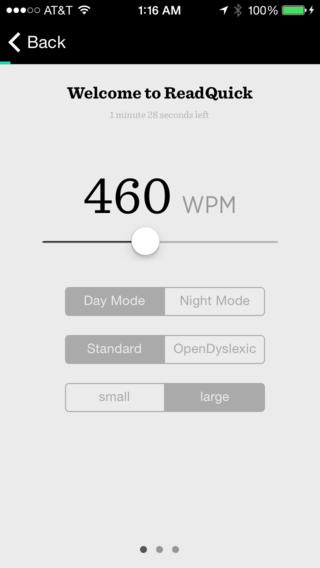
-

CCleaner for Android now available
Publié: juin 10, 2014, 5:02pm CEST par Wayne Williams
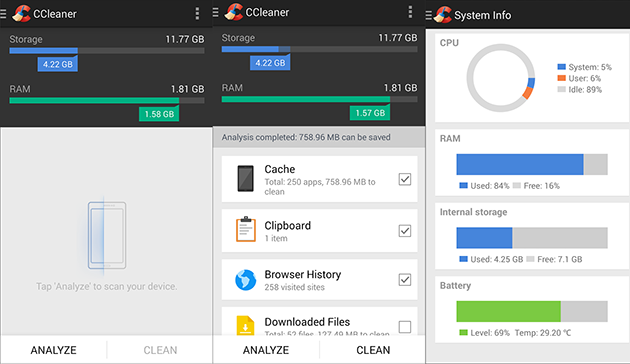
It’s been well over a year since Piriform first announced plans to bring CCleaner to Android. At the time the company suggested the release would be "soon" but it took until April this year for the first Beta version to be made available.
Tens of thousands of users signed up to test the app, and Piriform has added some additional features along the way. Today, the company finally announces the full version is now available on Google Play, and as you’d expect from Piriform, it's totally free and without ads.
CCleaner for Android can remove junk, reclaim space, monitor your system and help you browse safely. It offers the following features:
Optimize and Clean
- Speed up your phone and remove junk safely
- Clean application cache, download folders, browser history, clipboard content and more
- Delete call logs and SMS messages individually, in bulk, by age or by contact
Reclaim Storage Space
- Streamline your Android smartphone or tablet
- Quickly and easily uninstall multiple unwanted applications
- Free up valuable storage space on your device
Easy to Use
- Optimize your Android in just a few clicks
- Simple, intuitive user interface which is easy to navigate
- Totally free from Ads and clutter
- Fast, compact and efficient with low memory and CPU usage
Monitor your System
- Check the usage of your CPU
- Keep track of your RAM and internal storage space
- Check out your battery levels and temperature
It’s not the most attractive of apps, if I'm being honest, but it does have an excellent pedigree. You can download CCleaner for Android from Google Play now.
-

Microsoft patches Windows 8.x but leaves Windows 7 vulnerable, according to researchers
Publié: juin 10, 2014, 9:59am CEST par Wayne Williams
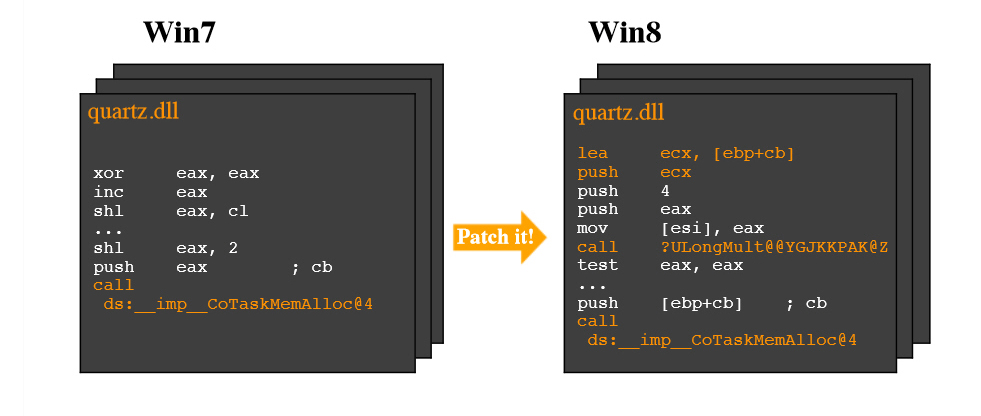
Around 50 percent of PC users are on Windows 7, while just 12 percent are running Windows 8.x, yet Microsoft is leaving the more popular OS vulnerable to zero day attacks by choosing to only patch the newest Windows version. That’s the findings of two security researchers who built a tool to compare 900 libraries in Windows 8 with their Windows 7 counterparts.
"If Microsoft added a safe function in Windows 8, why does it not exist in Windows 7? The answer is simple, it’s money -- Microsoft does not want to waste development time on older operating systems. They want people to move to higher operating systems," security researcher Moti Joseph claimed in a presentation at the Troopers14 conference in Heidelberg, Germany.
The DiffRay tool, developed by Joseph and malware analyst Marion Marschalek, compares libraries in the two operating systems and logs any patches found in one but not the other. In a demonstration, embedded below, they found four security functions which were updated in Windows 8 but not Windows 7.
Marschalek said it was "pretty simple, really scary simple" to develop the comparison tool, and warned that hackers, or governments, could use this technique to find and exploit missing patches in Windows 7.
Although the Troopers14 presentation happened last month, The Register only uncovered it a few days ago.
We reached out to Microsoft for comment on the allegations, and a spokesman told us: "We follow an extensive process to develop security updates for all supported devices and services, involving a thorough investigation, update development, and testing for compatibility among other operating systems and applications. We are continually working to improve our products and we encourage researchers to coordinate vulnerability disclosure with Microsoft in order to help protect customers".
-

Watch Microsoft’s Xbox One E3 2014 press conference here
Publié: juin 9, 2014, 10:41am CEST par Wayne Williams
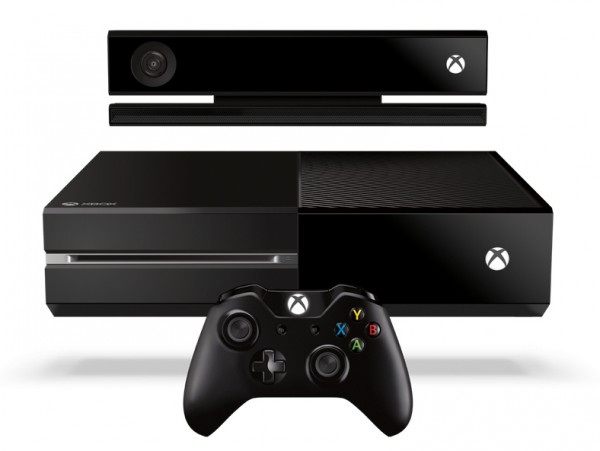
This year’s E3 is about to start, and all the big gaming companies are set to show what we can expect to see from them in the coming year.
Microsoft will be hoping to use this year’s gaming event to get people excited about Xbox One which, so far, has been roundly trounced by its big rival, Sony’s PlayStation 4. Microsoft recently announced it would be selling its console without the Kinect, in a bid to lower prices, and hopefully improve sales.
At E3, Microsoft will be able to push its console’s gaming credentials rather than just its set top box capabilities, and we can expect to see demos of forthcoming games, and possibly some hardware announcements too.
If you can’t be at E3, don’t worry -- you can still watch Microsoft’s media briefing, thanks to Twitch.
Proceedings kick off today, June 9, at 9:30am PDT/5.30pm BST, so be sure to check back then. We’ll save you the best seat in the house, as always.
-

Best iOS apps this week
Publié: juin 6, 2014, 3:04pm CEST par Wayne Williams
 Twenty-second in a series. It was Apple’s Worldwide Developer Conference (WWDC) this week and as expected the company took the wraps off OS X 10.10 ('Yosemite') and iOS 8.
Twenty-second in a series. It was Apple’s Worldwide Developer Conference (WWDC) this week and as expected the company took the wraps off OS X 10.10 ('Yosemite') and iOS 8.New features in the next iteration of the mobile OS include interactive notifications, HealthKit, Family Sharing, improved chatting, a better keyboard, and iCloud Drive. It will be released sometime in the fall.
New app releases and updates this week include an excellent jousting game from Gameloft, a recipe app packed with tasty vegetarian food, a tense stealth game, an opinion app from the New York Times, and an addictive game from the makers of Candy Crush Saga.
As always, if I miss an app that you think should have been included, let me know in the comments below, or drop me an email.
Here is my selection for this week.
Paid App of the Week
Green Kitchen -- Healthy Vegetarian Recipes ($4.99)
I’m not a vegetarian, but I do follow "Meat Free Monday". Finding tasty recipes without meat in them has never been much of a problem, but the overhauled version of this app will certainly help.
Vegetarian recipes on offer are organic and tasty with the minimum of gluten, sugar and dairy ingredients.
Recipes can be printed over AirPrint and shared over AirDrop.
If you like this app you might well also be interested in Healthy Deserts -- by Green Kitchen ($2.99).
Free App of the Week
Offers in-app purchases.
Gameloft used to sell games at a premium price, but have long since switched to freemium for a lot of releases. Rival Knights is free to play, but with in-app purchases.
The aim of the game is to take on your rivals in a jousting competition and ride your way to glory. As you’d expect from a Gameloft game, it looks great and plays well. There are five leagues and countless events, and you can unlock over 120 mounts, lances, armor, helms and so on.
You can recruit team mates, form clans, and battle other players in asynchronous multiplayer mode.
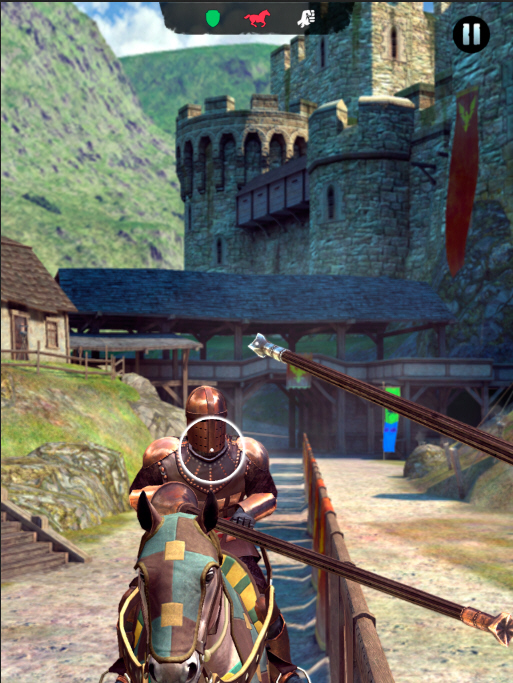
Other Apps
Offers in-app purchases.
From the New York Times, NYT Opinion is described as the first digital product to offer a standalone subscription to all of The Times’s opinion coverage, along with a continuous feed of commentary from The NYTimes and other reputable web sources.
The app is free, but you’ll need to subscribe to NYT Opinion which costs $5.99 every four weeks.
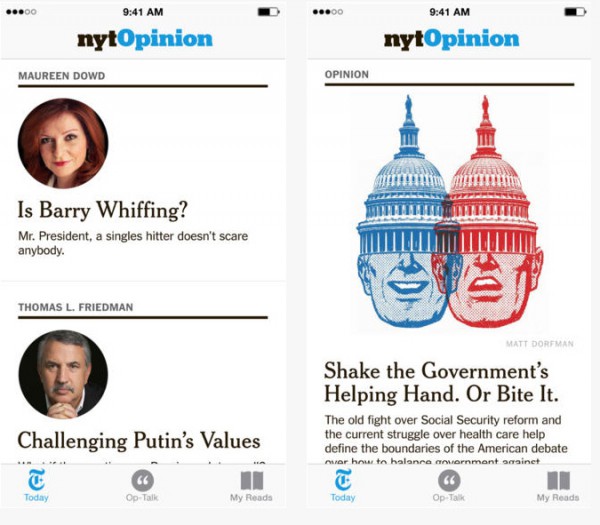
Offers in-app purchases.
From King, the makers of Candy Crush Saga (which I hate because I’m stuck on level 165), comes the sequel to… well, I’m sure you can guess. Travel the land bursting bubbles, win new levels and free Witch Country piece by piece.
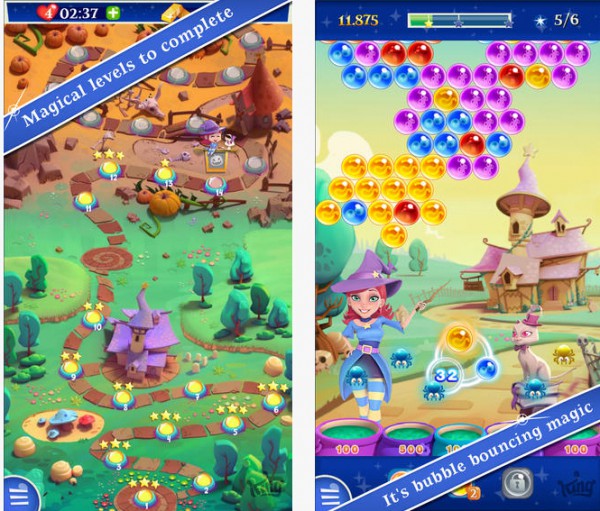
Back to celebrate its 10 year anniversary, this classic arcade shoot-’em-up offers attractive graphics, challenging boss fights, and a powerful upgrade system that lets you improve your shields, weaponry and more.
There are weekly tournaments against other players on new levels.
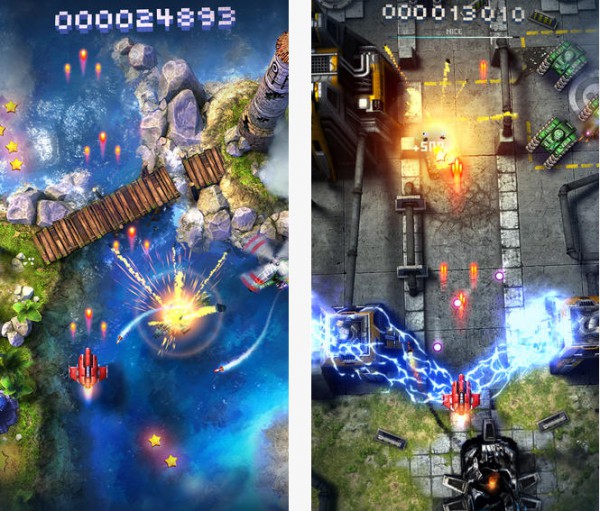
Offers in-app purchases.
An action packed free-running adventure set on Firefly Island. The aim of the game is to help Switch rescue his captured firefly friends by running, flying, and shooting. There are three areas to explore -- The Rolling Countryside, The Forbidden Forest, and The Crystal Caves.

Apple’s App of the Week
Offers in-app purchases.
Apple’s free app this week is a cracking game that I’ve personally spent a long time playing. Republique is a stealth action game set in an oppressive dystopian world. Sneak about looking for ways to escape and places to hide, making strategic choices and solving puzzles.
The graphics are excellent and the story really drags you in.
Republique is an episodic game, so if you enjoy part one you’ll need to be prepared to spend money on the following four episodes. Part two has just been released and will set you back $4.99.
-

Surface Pro 3 is the tablet that can replace your laptop -- if you ignore the small print
Publié: juin 5, 2014, 6:19pm CEST par Wayne Williams
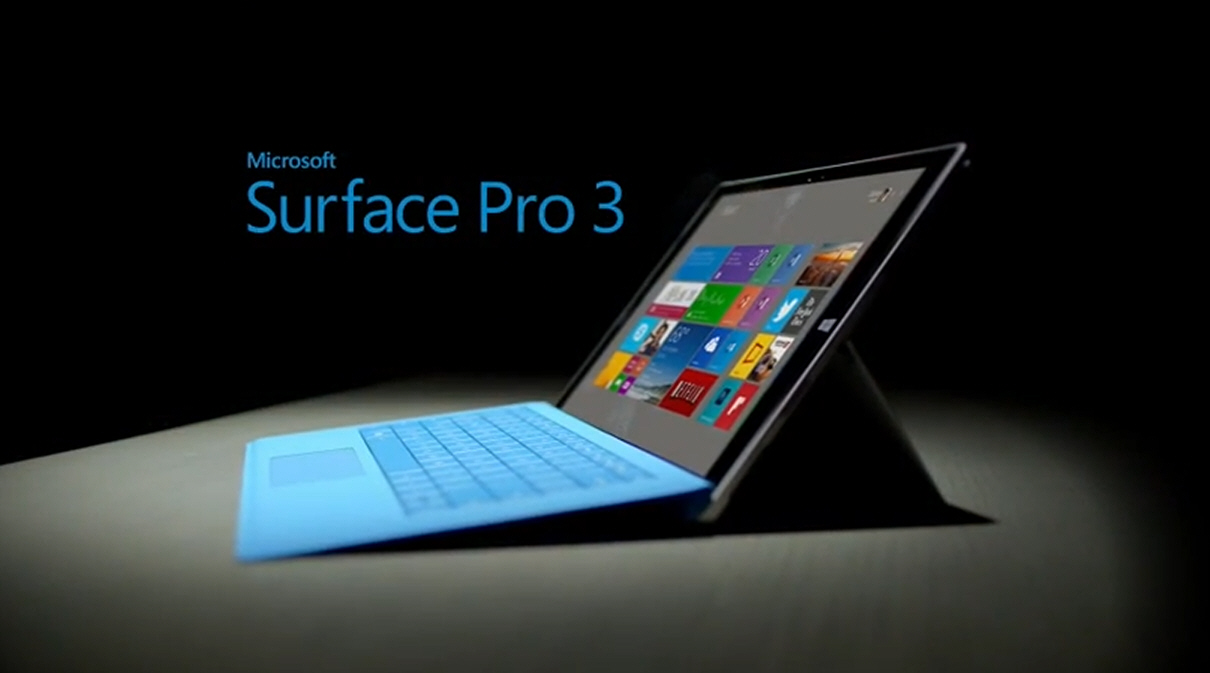
There’s no question that Surface Pro 3 is a nice piece of kit. My colleague Brian Fagioli loves his, and says it at last puts Microsoft ahead of the competition. It’s expensive though, and a lot of people will struggle to justify the cost.
With previous iterations, Microsoft pitched its slate against the iPad, but with this latest version the tech giant has decided to take a different tack -- positioning it instead as a laptop replacement.
A new 30 second teaser clip introduces this concept by asking the question: "How can a tablet replace your laptop?" and then goes on to show how. Well sort of. "Start with the best writing experience" is the first example given, which seems a bit odd. Seeing as laptops generally don’t offer any writing experience. It's like saying, "How can a cat replace a dog? Start with the best purring experience". Still it shows off the Pro 3’s pen in action.
Next the ad mentions the device’s thinness, the adjustable kickstand and keyboard, USB port, the freedom of touch and (of course!) Microsoft Office. The words "Office, keyboard and featured apps and programs sold separately" flash up in tiny writing.
So in other words, Surface Pro 3 is the tablet that can replace your laptop, provided -- as with all other tablets on the market -- you spend money on extras. I guess, "Surface Pro 3, the tablet that does a better job of replacing your laptop than other tablets once you've bought the pricey additional components that come as standard on a laptop" wasn't catchy enough for the marketing department.
But hey, I still want one.
-

China brands Windows 8 a threat to its national security
Publié: juin 5, 2014, 4:49pm CEST par Wayne Williams
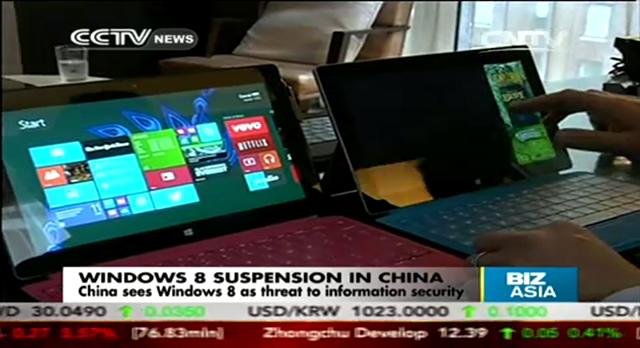
It’s fair to say China isn’t a fan of Windows 8. A few weeks ago, the tiled OS was banned from Chinese government computers, as part of a notice on the use of energy-saving products (if this sounds a bit vague, that’s because the reason given is).
Then, if that wasn’t bad enough news for Microsoft, a state-backed news report broadcast on China's CCTV has really put the boot in, branding the operating system a threat to China's cybersecurity, and suggesting it is being used to spy on Chinese citizens.
In a telephone interview, Prof Yang Min of Fudan University stated that the closed nature of Windows 8 posed a threat to the nation's cybersecurity efforts.
"Microsoft would no longer open its Windows 8 source code to the Chinese government," he said. "However, the security scheme of the operating system is designed to provide better access for Microsoft to users' database. For China it’s a big challenge on our information security".
Ni Guangnan, an Academician of the Chinese Academy of Engineering told reporters, "Your identity, account, contact book, phone numbers, all this data put together can be used for big data analysis. This analysis could be more accurate than our official statistics".
China believes the NSA is using Windows 8 to gather data on its citizens and transmit the details back home. "The data might be a good way for the US to monitor other countries," Guangnan warns.
Microsoft is reportedly working with the Chinese government to allay its fears, but things don’t look good for Windows 8. Guangnan claims, "China has set up an office to study cybersecurity and information technology in order to create our own operating system that solves the problems we are concerned with”.
You can watch the full report (in English) below:
-

Google releases Street View imagery of all 12 World Cup stadiums -- and beyond
Publié: juin 5, 2014, 11:47am CEST par Wayne Williams
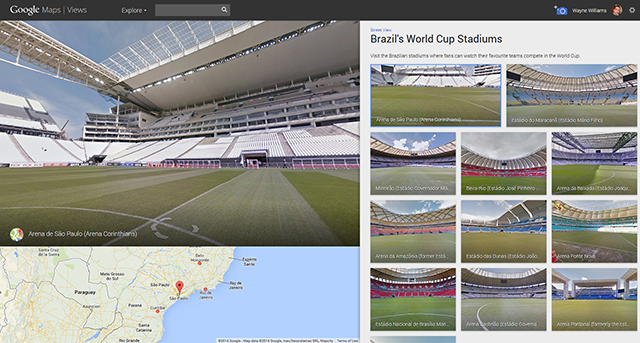
The world's biggest football tournament (or soccer, for Americans) is just a week away. This time around the World Cup takes place in Brazil, and unless you live there, or are a massive fan, the chances are you won’t be making the trek to watch the games live.
Fortunately, you’ll be able to watch as much of the event as you like on TV or over the web, and in advance of events kicking off, Google Maps has made it possible to explore all 12 stadiums in Street View.
In addition to the stadiums themselves, Google has captured the iconic painted streets -- one of Brazil’s tournament traditions.
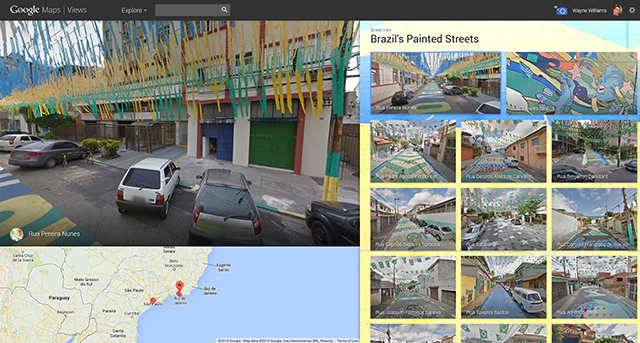
It has also gone further afield to cover numerous other sites in the country, including Iguaçu National Park and St. Michael of the Missions.
Related: Adware comes to the World Cup 2014 through Android app
-

Microsoft reveals impressive user numbers for everything (except Windows 8.x)
Publié: juin 4, 2014, 11:29am CEST par Wayne Williams

Today, during a keynote address at Computex in Taipei, Tony Prophet, corporate vice president of Windows Marketing, discussed recent Windows developments including Windows with Bing, relaxed certification requirements, Windows 8.1 Update, Windows Phone 8.1 and Windows universal apps.
He also talked about the value of Microsoft cloud services across devices, and revealed some hugely impressive numbers relating to everything from Office 365, One Drive and Skype to Xbox Live and Bing.
According to Prophet, there are now 4.4 million Office 365 Home subscribers, 250 million OneDrive users, 400 million active Outlook.com users, and 48 million Xbox Live members.
In addition, he revealed Skype is handling 2 billion minutes per day, and Bing now has 18 percent share of the US search market.
One thing he didn’t reveal was the number of Windows 8.x users. Obviously the figures he did offer all relate in some way to the cloud, but it would have been a good opportunity to throw out some new Windows 8.1 shipment numbers while discussing the tiled OS -- it’s been a while since Microsoft gave any indication of how new Windows is selling.
As OneDrive is baked into Windows 8.x I would have expected the number of users to be slightly higher, but of course not everyone who owns the OS will make use of the cloud storage service.
Bing’s share of the search market is much higher in the US than the rest of the world (in Europe Google has about 90 percent share) because that’s the area it puts most of its focus on.
One other thing that was impressive about the keynote was the number of new devices on show. Nick Parker, Microsoft corporate vice president responsible for Microsoft, had nearly 40 new Windows devices on stage, including all-in-ones, laptops, 2-in-1s, tablets and smartphones, including new devices exclusively for the Chinese market.
Photo Credit: sellingpix/Shutterstock
-

XP users feel no great rush to upgrade
Publié: juin 3, 2014, 9:34pm CEST par Wayne Williams
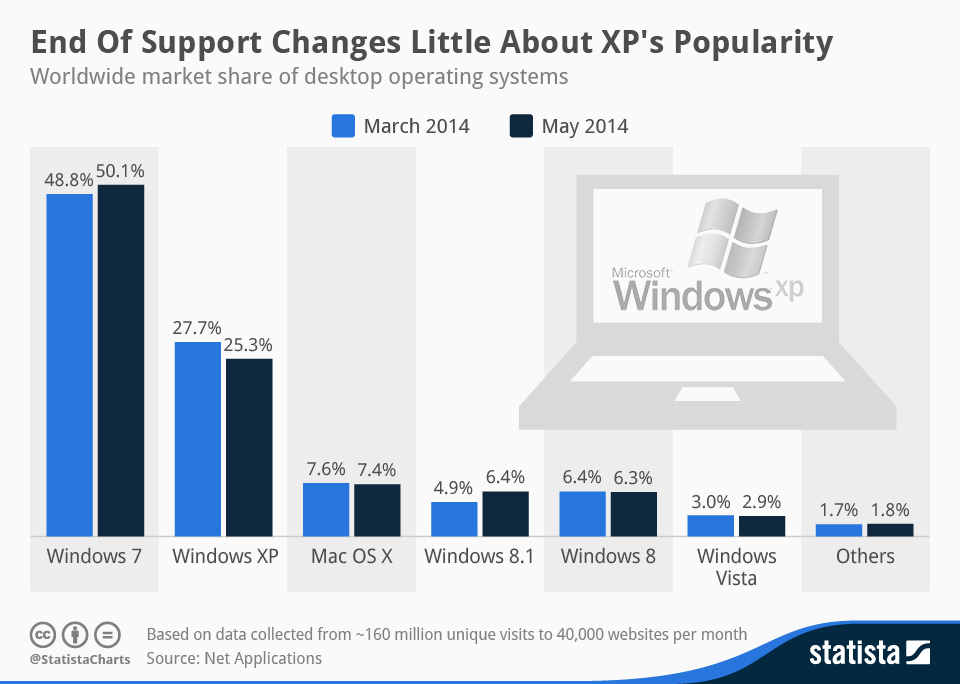
If Microsoft expected XP users to desert the aging OS once support officially came to an end, the tech giant will no doubt have been sorely disappointed. Although XP’s market share has fallen in the two months since it reached end of life, the 13 year old operating system remains hugely popular.
According to Net Applications, from March to May, XP lost just 2.42 percent market share, and is still to be found on over a quarter of all Windows systems. Windows 7 gained 1.29 percent in the same time period, to break the 50 percent barrier, and Windows 8.x increased its share by 1.34 percent for a not so grand total of 12.64 percent. Statista has put together a little graph showing how little end of support has changed XP’s popularity.
You could look at the numbers and say if XP continues to fall at the rate it currently is, and Windows 8.x continues to gain market share at the same rate it has over the past two months, that by the end of the year new Windows could have overtaken old Windows, but in reality I think what will happen is XP will stabilize and migrations will slow once users stop worrying about the risks of running an OS without security support.
Last month’s Internet Explorer vulnerability might have forced more users to move on from XP, had Microsoft not opted to issue an out-of-band security update covering the older OS (which was the right thing to do in my opinion). That action may be a one off, it may not -- it will depend on the seriousness of future flaws -- but it will certainly have comforted some XP users and maybe convinced them to hold off upgrading for just a while longer.
The truth is, if you’re still using XP after all this time and haven’t been tempted by Vista, Windows 7 or 8.x, you’re probably not going to be rushed into upgrading by something like a lack of security updates. In fact, the two XP users I personally know don’t usually bother to install any updates. One told me, "I think after thirteen years they’ve probably found all the really bad bugs by now anyway".
If you are still using XP, there’s always this way of getting free security updates, although Microsoft would rather you didn’t.
-

Symantec's cloud storage experiment fails completely -- Norton Zone set to close
Publié: juin 3, 2014, 2:38pm CEST par Wayne Williams

While there’s certainly no shortage of cloud storage solutions to choose from, Norton Zone’s appeal -- on paper at least -- is the security it offers users. Content is encrypted when uploaded and stored in Symantec’s own secure data center, and the service automatically scans files for malware before they can be downloaded. As is fairly typical, you get 5GB of storage for free.
Or rather you did. Symantec has made the decision to discontinue Norton Zone and wind down support of the service over the next 30 to 60 days.
As for the reason, in an email sent to customers, the company says: "At Symantec, we continually scrutinize our portfolio to make sure we’re delivering innovative solutions that captivate our customers and give you the most value. In reviewing the Norton Zone service, we looked at competitive solutions available today, our differentiation, and how well we addressed your emerging needs. While Norton Zone is an innovative, new offering, it is not yet solving your needs fully".
And now it never will.
Norton Zone customers will have access to their files for the next 60 days. For the first 30 days, the files can be accessed from any device, but after July 7, mobile support will be switched off, so the files can only be accessed from a Windows or Mac computer. All the service’s features, like sharing, will be switched off then too. After August 6, files and related data, like file names, will be permanently deleted.
The email sent to customers explains how to go about moving your files to another service, and also explains that subscribers will automatically be refunded the paid amount in full.
Cloud storage is a tough market to break into, and just having a known name isn’t enough to challenge existing players, as Symantec’s utter failure to get so much as a toe hold clearly proves.
-

Bing turns five, promises the best is 'on the imminent horizon'
Publié: juin 3, 2014, 11:43am CEST par Wayne Williams
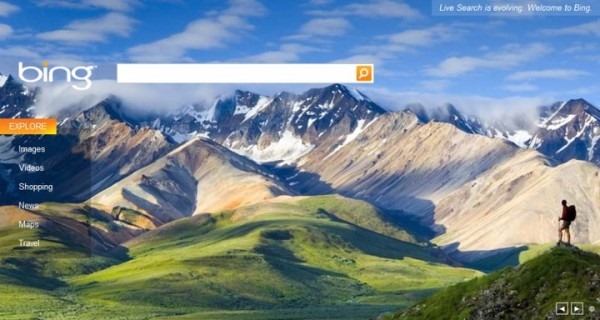
Five years ago today, Microsoft launched the Bing search engine. I remember it well. In particular I remember shaking my head at that name, but also admiring the photography that appeared on the home page.
To celebrate five years of Bing, Microsoft has put together a blog post that chronicles the changes that have occurred over the years, and hints at what’s to come. It’s also assembled a gallery of the best home pages.
"Over the past five years, we’ve seen tectonic shifts in how people experience the Web," the Bing team says. "From the rise of social data and the myriad connections that exposed, to the explosion of mobile experiences that fundamentally redefined how people interact with devices. The Web of today wouldn’t recognize itself in 2009. Think of the sheer volume of data that has been created in the past five years. The amount of information shared in single day in 2014 equals everything shared digitally prior to 1997".
Bing breaks the five years down as follows:
- 2009: The Semantic Web
- 2010: A Social Explosion
- 2011: Tablets and Mobility
- 2012: Intelligence
- 2013: The Digital World
And as to what’s next? Well, Microsoft has this to say:
The idea of launching a browser, going to a website, and typing in a search box? That’s so 2009. The best is not yet to come but on the imminent horizon. As the world of devices constantly changes and new form factors come into play there will be a need to better use information, either by seeking it out or having it pushed to you, and take action. Bing has shifted its focus to be in position to be the search for this new, changing world.
You should expect relevant information to come to you when and where you need it. You should expect experiences to adapt to you and your context, instead of the other way around. You should expect proactive experiences that anticipate what you need. You should expect information to be actionable for what you need at home or work. Only Bing and Microsoft can provide all of this, and we couldn’t be more excited for the next five years and beyond.
Bing has certainly improved over the years, and adapted to become more than just a straight search engine, which is just as well as it was never going to provide any meaningful challenge to Google in terms of market share.
Do you use Bing, and if so why?
-

How to watch Apple's WWDC 2014 keynote speech live online (and what to expect)
Publié: juin 2, 2014, 11:40am CEST par Wayne Williams
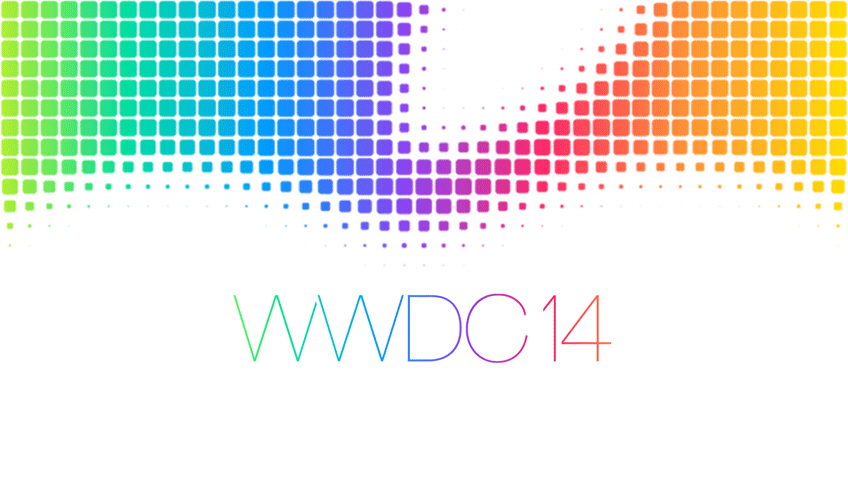
Apple's Worldwide Developer Conference kicks off today, with the big keynote speech scheduled for 10am PST/6pm BST.
Among the highlights we can expect to see OS X 10.10, which might, possibly, be called 'Yosemite' (the OS X banner showing at the Moscone Center in San Francisco has the famous California national park in the background), and iOS 8, plus new versions of existing hardware, and maybe a few surprises.
OS X 10.10 is likely to be a significant update with a rumored new iOS 7-style redesign and some great new features, including, if we're lucky, an iOS compatible version of AirDrop. iOS 8 on the other hand, is expected to be a more minor refresh, with UI tweaks and improved Apple Maps. It is rumored that Apple is working on split-screen multitasking for iOS, but whether that will make it into this release remains to be seen. A new Healthbook app should make an appearance, however.
Apple doesn’t usually reveal major new hardware at WWDC -- typically it’s just updated versions of existing products. A new build of Apple TV is certainly possible, and a new Mac mini is quite likely. We can expect to see and hear something about the new Beats acquisition, and possibly see Beats co-founders Jimmy Iovine and Dr. Dre up on stage.
It’s rumored that Apple is working on a 'smart home' platform that will allow you to control the lights and home appliances with your iPhone. WWDC is certainly the place to announce something like that.
Will we see the fabled iWatch? Hmm.
We’ll know for certain what Apple will be announcing once the big keynote speech begins and you can watch it live online.
As always, Apple likes to preach to the faithful, so there are the usual restrictions in place. Live streaming the keynote requires Safari 4 or later on OS X v10.6 or later; Safari on iOS 4.2 or later. Streaming via Apple TV requires second- or third-generation Apple TV with software 5.0.2 or later. Assuming you have what's required, you can watch the keynote live here.
There’s also an official WWDC app available. This lets you stream videos from current and previous WWDC sessions, start watching on one iOS device, and pick up where you left off on another, browse times, locations, and descriptions for sessions, labs, and special events, and keep up with the latest news, get important notifications, and see daily photos.
-

Normal service is resumed as Windows 7's growth once again comfortably outpaces Windows 8.x
Publié: juin 1, 2014, 10:21am CEST par Wayne Williams

Windows XP users might be able to (sort of) cheat the aging operating system’s end of life, but ultimately the only real way to stay safe is, as Microsoft says, by upgrading to a newer, more modern version of Windows. NetMarketShare’s monthly snapshot of the desktop OS share trend shows users are continuing to slowly migrate away from XP. The OS’s share dropped 1.02 percent from 26.29 percent in April to 25.27 percent in May.
So the question is, where are XP users moving to? I think you probably know the answer to that by now.
Windows 8 continued to lose market share, going from 6.36 percent in April to 6.29 percent in May for a drop of 0.07 percent. Windows 8.1 grew share, going from 5.88 percent to 6.35 percent, for an increase of 0.47 percent. You don’t need a calculator to work out that in total Windows 8.x share grew by 0.4 percent. The previous month it grew by 0.9 percent, which was its biggest market share gain since December 2013.
It might be hard to get hold of Windows 7 these days, but that hasn’t stopped the OS packing on growth. It went from 49.27 percent in April to 50.06 percent in May -- finally breaking through the 50 percent barrier -- for an increase of 0.79 percent, nearly double that of Windows 8.x.
It seems no matter what Microsoft does with Windows 8.x, it can’t persuade users to switch to it. You would think that rolling out the superior Windows 8.1 would have improved the tiled operating system’s fortunes but it didn’t. Windows 8.1 Update, a mandatory update designed to make the OS more appealing to keyboard and mouse users, has had virtually no impact on share, and killing off an old operating system with over a quarter of the market and trying to move people on to "new Windows" hasn’t had the desired effect either.
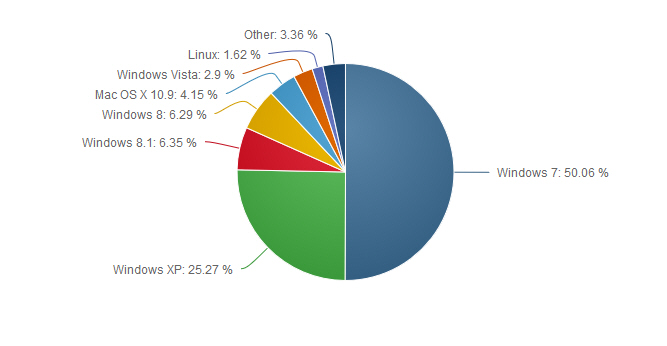
-

Best iOS apps this week
Publié: mai 30, 2014, 3:24pm CEST par Wayne Williams
 Twenty-first in a series. Lots of big Apple news this week. The company revealed it is indeed buying subscription streaming service Beats Music, and Beats Electronics (which makes the popular Beats headphones, speakers and audio software) for a whopping $3 billion. Following the announcement Eddy Cue, Apple SVP of Internet Services, took the opportunity to share some numbers relating to iTunes, and revealed that Apple has sold 35 billion songs, and iTunes Radio now has 40 million listeners. Cue also said that coming later in the year Apple has the "best product pipeline" that he’s seen in his 25 years at the company. Sounds exciting.
Twenty-first in a series. Lots of big Apple news this week. The company revealed it is indeed buying subscription streaming service Beats Music, and Beats Electronics (which makes the popular Beats headphones, speakers and audio software) for a whopping $3 billion. Following the announcement Eddy Cue, Apple SVP of Internet Services, took the opportunity to share some numbers relating to iTunes, and revealed that Apple has sold 35 billion songs, and iTunes Radio now has 40 million listeners. Cue also said that coming later in the year Apple has the "best product pipeline" that he’s seen in his 25 years at the company. Sounds exciting.Apple’s Worldwide Developers Conference (WWDC) kicks off on Monday, giving us a glimpse at some of what the company has in store for the rest of the year.
On to new releases, and this week's top apps include a Zelda-like fantasy RPG, a stylish Instagram client for iPad, a cartoon puzzler, a sketching app, and a soccer game.
As always, if I miss an app that you think should definitely have been included, let me know in the comments below, or drop me an email.
Here is my selection for this week.
Paid App of the Week
Battleheart Legacy ($4.99)
The follow-up to Battleheart, this new game drops you into a rich and detailed fantasy world. Customize your hero with powerful skills and items, and then send them into battle against hordes of enemies. There’s a refined real-time combat system, and over 150 unique skills across 12 classes, and 200 pieces of equipment.
If you enjoy games like Zelda, then you’ll certainly like Battleheart Legacy.
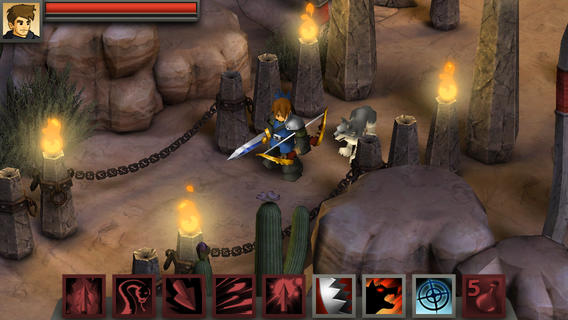
Free App of the Week
Offers in-app purchases.
There’s still no official Instagram app on iPad, so Retro aims to plug that gap. Tiny Whale's Instagram viewer offers a choice of display modes (single column, grid, and mosaic), and will alert you whenever you get a comment or a new like. You can also see how popular your photos are.
Version 2.0 is a major update and boasts a redesigned interface, with a dark theme that can be set to launch when evening arrives. There’s a new background update option, and a recap photo generator which produces an image that sums up the last two months for you.
Other Apps
Drawect ($0.99)
This is fun sketching app aimed at kids and adults alike. It provides easy access to a range of controls, and offers a single drawing mode for "more ambitious artists" and a mirror drawing feature which lets you create perfectly symmetrical sketches.

Edna & Harvey – The Puzzle ($1.99)
We last saw young Edna and her talking stuffed bunny Harvey in The Breakout, an excellent cartoon adventure game. The Puzzle is a puzzle-based game that you can play on your own or with friends. There are 90 challenges to solve, plus 15 extra screens using images from the pair’s first adventurous outing.
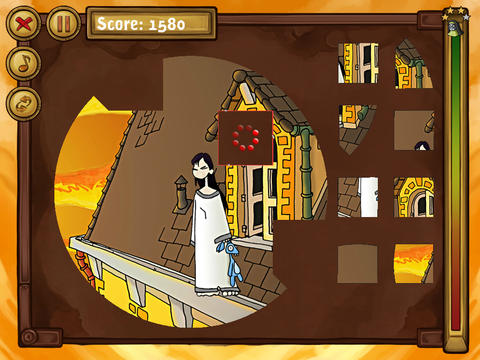
Offers in-app purchases.
The FIFA World Cup is drawing ever closer, and this app lets you feel as if you’re taking part in one of the tensest elements -- the dreaded penalty shootout. You can take penalties or try to save them, and then watch slow-motion action replays.
Controlling the action is very simple -- you shoot or drag the goalkeeper to make saves, all using one finger.
There are 20 local offline tournaments, or you play against friends in real-time.
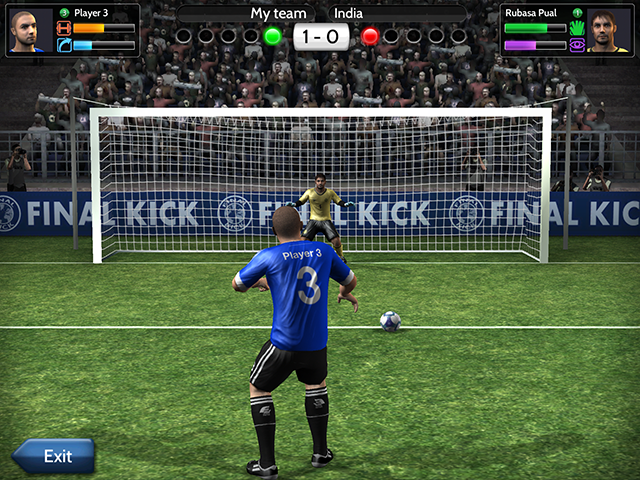
Inky is a smart email client for iOS that understands what your messages are about and helps to organize them. Setting up accounts is easy -- you just have to enter your email address and password and Inky does the rest.
It can group content by message, conversation or sender, and offers a handy one-click unsubscribe option. You can even send quick canned replies to messages.
Inky is described as being free "for a limited time" so if you’re interested in what it has to offer you’ll want to grab it sooner rather than later.
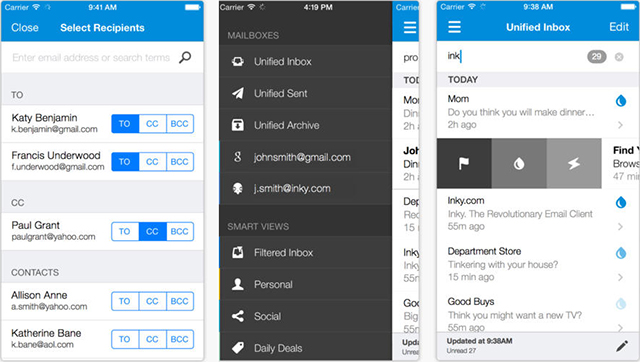
Apple’s App of the Week
Offers in-app purchases.
Apple’s free app this week is the second game in Chair Entertainment’s Infinity Blade series. Powered by Epic Games' Unreal engine, the fantasy hack and slash game is a true AAA quality title, and one that all iPhone and iPad users should own. It really shows what Apple’s hardware is capable of.
There are numerous enemies to battle across beautiful and immersive dynamically changing environments. You can choose your character’s weapons, armor and spells.
The latest game in the series, Infinity Blade III, is currently on sale for $2.99.
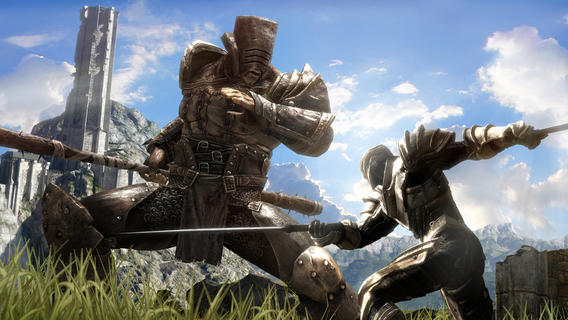
-

Limited-time BetaNews offer: Get Bitdefender Mobile Security free for 6 months
Publié: mai 30, 2014, 1:00am CEST par Wayne Williams
 With Android security threats becoming more sophisticated each day, your mobile device needs extra protection. Bitdefender Mobile Security for Android keeps your most data-sensitive apps secure with its new App Lock feature.
With Android security threats becoming more sophisticated each day, your mobile device needs extra protection. Bitdefender Mobile Security for Android keeps your most data-sensitive apps secure with its new App Lock feature.App Lock lists all the apps installed on your phone and allows you to easily set up a PIN to restrict access to one or more of them. Nobody can access a locked app without the Bitdefender PIN.
Bitdefender Mobile Security also offers enhanced Anti-Theft functionality to help you find, wipe or lock your missing device faster and easier. It can pinpoint apps that access sensitive data such as contacts lists, messages and calendar entries or saved photos, and the cloud-based scanning technology blocks malicious websites, phishing and fraud attempts.
Here’s a quick overview of Bitdefender Mobile Security’s key features:
- AppLock -- Adds an extra layer of security to your preferred mobile apps.
- Privacy Advisor -- Shows how installed apps use, and can abuse, your personal information.
- Anti-theft -- Allows you to send SMS commands, lock, track and wipe your Android from any Internet-connected device.
- On-install and on-demand malware scanner -- Shields Android devices from the newest malware threats and aggressive adware.
- Web Security -- Protects users in real time when browsing websites using Chrome and Android’s default browsers.
Bitdefender Mobile Security usually retails for $9.95 a year but BetaNews readers can use it absolutely free for six months. The only hitch is that you have just 24 hours to take advantage of our exclusive offer, so act fast!
To get your free six month version of Bitdefender Mobile Security just click here.
-

Opera Coast: A new way of interacting with the internet [Q&A]
Publié: mai 28, 2014, 2:13pm CEST par Wayne Williams
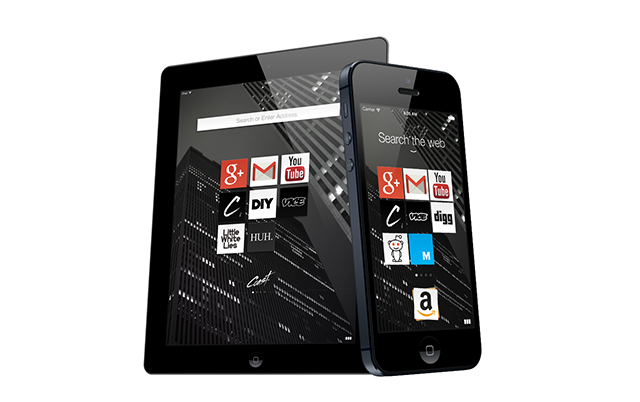
Coast, from Norwegian developer Opera, is a browser designed specifically for iPhones and iPads. Unlike other browsers it’s been built for simplicity. Instead of buttons, the app uses swipes for navigation. Gestures have replaced the typical functions. Despite this ease, Coast offers most of the features you could want, including a powerful, intuitive search and address bar that suggests keywords and site thumbnails as you type.
I spoke to Coast's creator, Huib Kleinhout, about the browser and his plans for the future.
BN: What is Coast?
HK: Opera Coast provides a new way of interacting with the internet. It's born out of the realization that the user experience within web browsers has been stuck for two decades. We live in a time where billions of people have access to visual, touch based and interactive services and applications on mobile phones and tablets, meanwhile the web browser is still stuck in the era where the internet consisted of a bunch of academic documents accessed by technology enthusiasts on clunky PC's.
With Opera Coast we started from scratch, building the internet experience as how you expect it to be in 2014. In Opera Coast you won't find tons of bells and whistles but you'll experience simplicity, elegance and the best and most entertaining experience for touch devices.
BN: What are the benefits of using it over a regular browser?
HK: Opera Coast offers a better workflow for browsing the web. Websites work like applications, you don't have to think about opening or closing tabs, organizing and updating your bookmarks, history or other outdated browser paradigms.
The star of the show with Opera Coast will always be content. Webpages are shown full screen and your favorites sites are tiles that you can simply drag around. No tiny buttons or abstract user interfaces elements, just your content, how you want it.
You can now swipe through the web. Every element is designed for touch. Almost all features can be controlled using swipes, such as swiping down to enter search, swiping to navigate pages, or swiping down on the Recent Sites button. Making browsing much more efficient, it's fully multi-touch, you can for instance drag a tile with one finger while swiping through the home screen with the other.
In Opera Coast it's as much what you see as what you don't see. Opera Coast automatically syncs between your iPad and iPhone without setting up anything. There is no address field or padlock because Opera Coast has a safety engine that automatically recognizes complex security threats without overloading the user with technical information. Outdated pages are automatically reloaded. Technology is put where it belongs: under the hood.
BN: Do you have plans to make it available on other platforms -- Android or Windows 8, for example?
HK: We chose to develop Coast for iOS because it's the first and most successful touch screen operating system. There are roughly half a billion devices that can run Coast and we want to ensure that users of these phones and tablets get the ultimate user experience, perfectly tailored to the conventions of the OS.
Unfortunately we can't talk about future plans or releases.
BN: You actively seek feedback from users, what sort of responses have you had so far?
HK: We've gotten overwhelmingly positive feedback. We hear that even though Coast is quite different from existing browsers, users quickly find their way and once they get into the flow, they really love it. We are getting requests for providing Coast on other platforms and ideas for new features. We will be implementing some of the feature suggestions in future releases while keeping them in line with the philosophy that we used to develop Coast.
BN: What features do you have planned for future releases?
HK: That is a big secret! But what we can tell you is that there are more preconceptions of the internet experience that we believe are ripe for change. If the history of technology teaches us one thing it's that what now seems as an unbeatable convention can be vanished tomorrow.
BN: Much of what makes Coast so good is its simplicity. Can you maintain that while adding extra features?
HK: A common engineering philosophy is to never make the software slower. If a new feature slows down the software, other parts are optimized to make up for the loss of performance. I believe the same practice applies to the user experience. By rethinking the experience you can offer both new features and simplicity.
-

Microsoft warns against XP update hack -- suggests users 'upgrade to Windows 8.1' instead
Publié: mai 27, 2014, 3:48pm CEST par Wayne Williams

The hack I wrote about yesterday, that allows XP users to continue to receive security updates via the still-supported Windows Embedded POSReady 2009, was never going to get Microsoft’s blessing. Obviously it is a slightly unusual and risky way of cheating the system, even though it works.
ZDNet picked up on the story and asked Microsoft for a comment, and as you’d expect, the devices and services giant was happy to take the opportunity to suggest XP users just move on.
Microsoft said:
We recently became aware of a hack that purportedly aims to provide security updates to Windows XP customers. The security updates that could be installed are intended for Windows Embedded and Windows Server 2003 customers and do not fully protect Windows XP customers. Windows XP customers also run a significant risk of functionality issues with their machines if they install these updates, as they are not tested against Windows XP. The best way for Windows XP customers to protect their systems is to upgrade to a more modern operating system, like Windows 7 or Windows 8.1.
Interestingly, in saying the updates "do not fully protect Windows XP customers", Microsoft is admitting that they will at least partially provide some protection, which XP users won’t otherwise receive. Of course there are risks in installing updates that aren’t designed purely for XP, so if you do use this method it’s definitely worth making sure you backup your system, and maybe be selective about which updates you install.
-

Avast hacked -- 400,000 user details stolen
Publié: mai 27, 2014, 2:05pm CEST par Wayne Williams
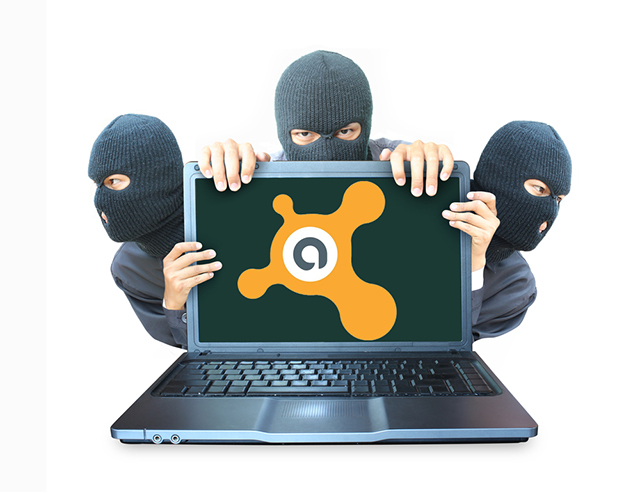
Getting hacked is bad enough for any company -- just ask eBay -- but it’s even worse (and certainly more embarrassing) when the firm in question is responsible for producing security software designed to protect us from the dangers on the web. Eight months ago AVG and Avira had their websites taken over by pro-Palestinian hackers and now Avast admits it’s had to take its forum offline due to an attack.
Avast says "user nicknames, user names, email addresses and hashed (one-way encrypted) passwords were compromised" and while it stresses less than 0.2 percent of users were affected, that still equates to details of around 400,000 people.
Avast also admits that while the "passwords were hashed, it could be possible for a sophisticated thief to derive many of the passwords" and recommends that if you use the same login details on other sites, you change them immediately.
The company says it is rebuilding the forum and moving it to a different software platform, and that when it returns, it will be "faster and more secure". Well, you’d hope so.
As to how the hacker(s) breached the forum, which was hosted on a third-party software platform, Avast admits it currently has absolutely no idea. Which is hardly comforting. The company does think the attack was very recent and detected almost immediately, however.
Photo credit: chanpipat/Shutterstock
-

Watch the LG G3 launch here live
Publié: mai 27, 2014, 11:13am CEST par Wayne Williams
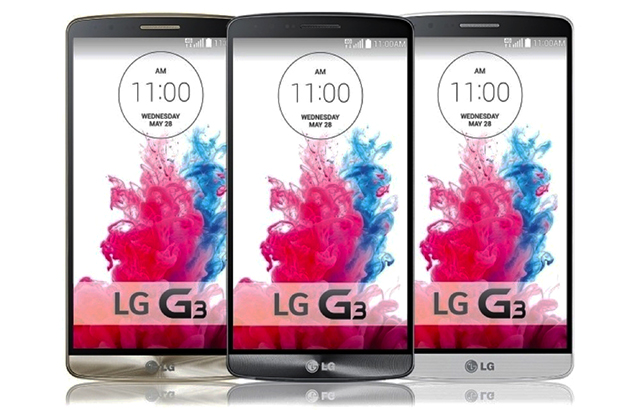
One of the most highly anticipated phones of 2014, the LG G3, is to launch today at simultaneous events in London, New York, and San Francisco. There’s not much we don’t know about the device, thanks to a stream of leaks.
The 5.5 inch handset is expected to have a brushed-metal finish and offer a Quad HD screen with a resolution of 2560x1440. Leaked product information says it will have a Snapdragon 801 processor and 2GB of RAM, 13MP rear camera with image stabilization, 2.1MP front camera, and be water and dust repellent.
Brian Fagioli will be at the New York launch, and you can expect him to deliver his thoughts on the new phone afterwards, but if you want to follow events as they happen, you can tune into the live stream at the LG Global, and LG USA websites. You can also watch it here via the official UK YouTube channel.
The event will kick off at 1pm ET/6pm BST.
-

How to continue getting free security updates for Windows XP -- until 2019
Publié: mai 26, 2014, 2:16pm CEST par Wayne Williams

Microsoft has stopped providing XP users with security updates, forcing them to either upgrade to another, newer operating system, or gamble with their safety. While the latest usage figures show that a large portion of users are moving away from XP, there’s still a sizable number of users who aren’t -- or can’t.
If you’re an XP user, or know some XP users, there’s a trick which makes it possible to receive security updates for the aging OS for another five years -- right up until April 2019.
The workaround makes use of updates for Windows Embedded Industry (formerly known as Windows Embedded POSReady). This is based on Windows XP Service Pack 3, and the security updates which are being released for it are essentially the same ones Microsoft would have pushed out for XP, if it was still doing so.
You can’t simply install the updates -- that would be too easy -- and you’ll receive a version mismatch error if you try. But a simple registry tweak is enough to fix that.
Create a text document, and call it XP.reg. You’ll need to make sure .reg is the proper extension -- so not "XP.reg.txt". If it’s not showing up as a registry file, open any folder, go to Tools > Folder Options, select View and uncheck 'Show hidden files and folders'. That should fix the problem.
Right-click the file, and select Edit. Paste in the following:
Windows Registry Editor Version 5.00
[HKEY_LOCAL_MACHINE\SYSTEM\WPA\PosReady]
"Installed"=dword:00000001
Save it, and then double-click the file. That will make that change to the registry. That’s all you need to do. Windows will now automatically fetch updates designed for POSReady 2009, ensuring XP remains protected for the foreseeable future.
This trick only works for 32-bit editions of XP, but there’s a workaround for 64-bit versions here.
Naturally, there’s no way of knowing how long this trick will work -- Microsoft could put a stop to it at any moment. Also, because you’re installing updates for a system other than Windows XP, there’s the possibility that not all updates will work as intended. But it’s still worth a shot.

-

Microsoft introduces Windows 8.1 with Bing for low cost devices
Publié: mai 23, 2014, 7:33pm CEST par Wayne Williams

Windows 8.1 with Bing first came to our attention three months ago. It’s essentially a regular version of Windows 8.1, but for OEMs and with Bing set as the default search engine. Making Bing the default option helps to lower the cost of the OS for system builders.
A range of new Windows devices are set to be unveiled over the next couple of weeks in the run up to Computex in Taipei, with many of the lower cost ones expected to be running this variant of the tiled operating system.
As Microsoft’s Brandon LeBlanc explains, "Windows 8.1 with Bing provides all the same great experiences that Windows 8.1 offers with the Windows 8.1 Update, and comes with Bing as the default search engine within Internet Explorer. And of course customers will be able to change that setting through the Internet Explorer menu, providing them with control over search engine settings. This new edition will be only be available preloaded on devices from our hardware partners. Some of these devices, in particular tablets, will also come with Office or a one-year subscription to Office 365".
The more devices running Windows 8.1, the better for Microsoft of course. LeBlanc again, "The end result is that more people -- across consumer and commercial -- will have access to an even broader selection of new devices with all the awesomeness that Windows 8.1 provides, and get Office too, all at a really affordable price. Additionally, as reach expands, the opportunity for developers and their apps also increases".
-

Best iOS apps this week
Publié: mai 23, 2014, 3:16pm CEST par Wayne Williams
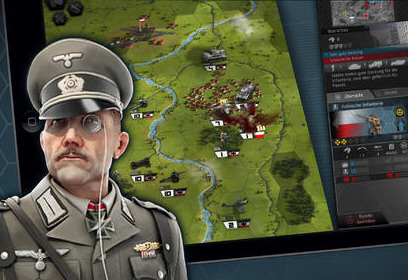 Twentieth in a series. Missed out on Weed Firm? Don't worry, Apple may have pulled that particular game from the App Store, but there are plenty of smoking new apps available to devote your time to.
Twentieth in a series. Missed out on Weed Firm? Don't worry, Apple may have pulled that particular game from the App Store, but there are plenty of smoking new apps available to devote your time to.New releases this week include an app that offers a fun way to find your missing iOS device, an HD remake of a Nintendo DS classic, a picture sharing app with a twist (you add songs to your shots), a construction game for kids, an app to help you catalog your favorite wines, a swarm-based game, and a GPS app for golfers.
As always, if I miss an app that you think should definitely have been included, let me know in the comments below, or drop me an email.
Here is my selection for this week.
Paid App of the Week
Marco Polo ($0.99)
If you’re forever misplacing your phone (as I am) you’ll be pleased to know there’s now a fun way to track it down. No need to hunt around, or try to use Find My iPhone. All you have to do is shout "Marco!" and the missing device will respond with "Polo" so you can find it.
There are over 30 different "Polo" voices recorded by professional voice actors, and you can change what you need to shout in order to get a response-- you can pick anything you want. It works even if your device is in sleep or silent mode and offline.
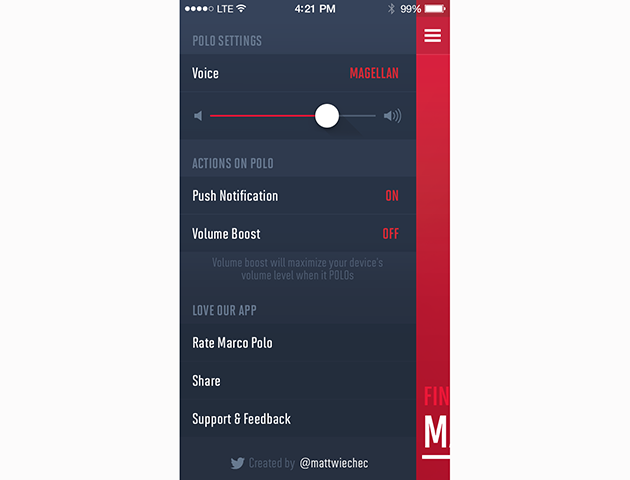
Free App of the Week
Tunepics lets you to share your favorite pictures with a tune to help capture the emotion behind each moment. You can select the right track from millions on iTunes, and add weather (and other) filters to each picture, to help enhance the mood.
Tunepics can be shared on the usual social networks, and the emotion wheel lets you see how you make people feel. Friends can of course share their Tunepics with you.
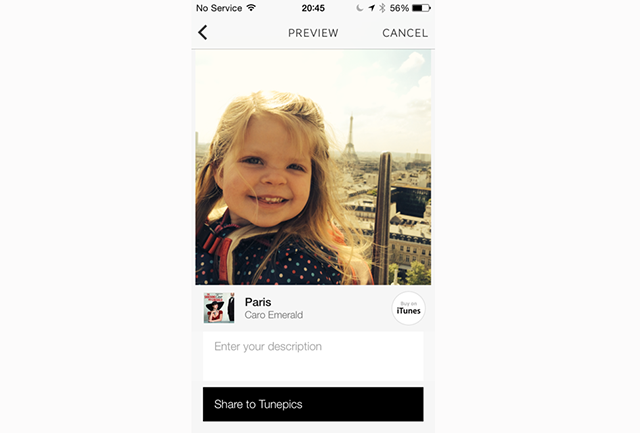
Other Apps
Little Builders -- Trucks, Cranes & Diggers ($2.99)
Aimed at children aged five and up, this app lets kids drive diggers, operate a crane, mix cement, roof a building, put up a wall, and paint a house. There’s lots to keep their attention, including plenty of disastrous moments -- such as a water pipe bursting or a builder falling into a hole. There are over 100 animations.
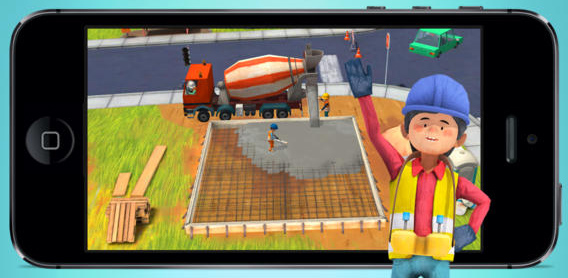
Globosome: Path of the Swarm ($2.99)
An exploratory action adventure in which you are a little spherical being who has lost its swarm. You can replicate into your own swarm by feeding on your natural environment, and this will allow you to accomplish tasks that would be otherwise impossible.
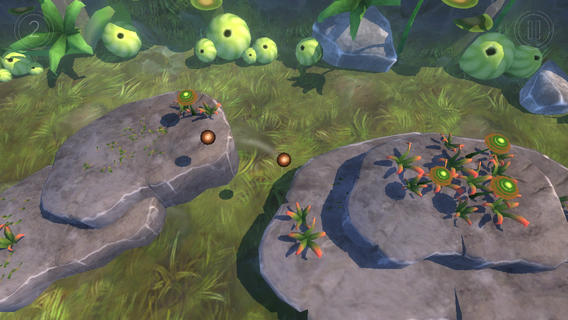
Offers in-app purchases.
The Vivino wine app has a massive database containing over 50 million scanned bottles of wine. Drinkers can use the network to quickly identify a wine, read the wine’s reviews, view pricing, and discover locations that sell the wine, all for free. And the app is now available in five additional languages -- French, Italian, Spanish, German, & Portuguese -- which should give Vivino even deeper coverage.
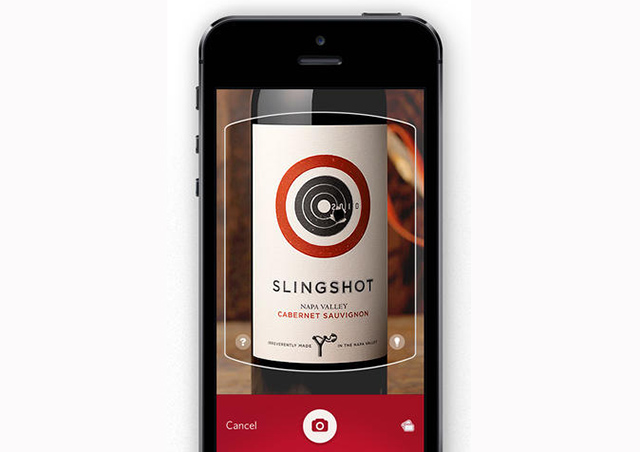
Panzer Tactics HD ($4.99)
Offers in-app purchases.
This is an iPad remake of the Nintendo DS classic. The year is 1939 and the world is on the brink of war. In this popular turn-based tactical game you can take control of the German, Russian or Allied forces. There are up to 33 historical missions and over 150 units at your disposal, plus environmental factors like terrain and weather to worry about, which makes it possible to replay the same missions over and over and experience different outcomes every time.
To get the most from the game you’ll need to purchase additional campaigns. The Allied one costs $3.99.
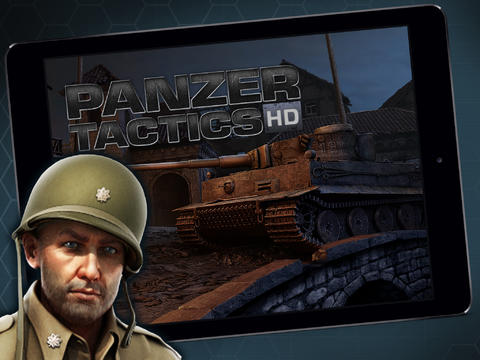
Apple’s App of the Week
If you’re a golfer, you’ll appreciate Apple’s free app this week. It offers 3D maps for almost 32,000 golf courses around the world. When you’re playing on a course, the app will track your current position, show the yardages, recommend the best club for that shot, keep track of how well you’re doing, and more.
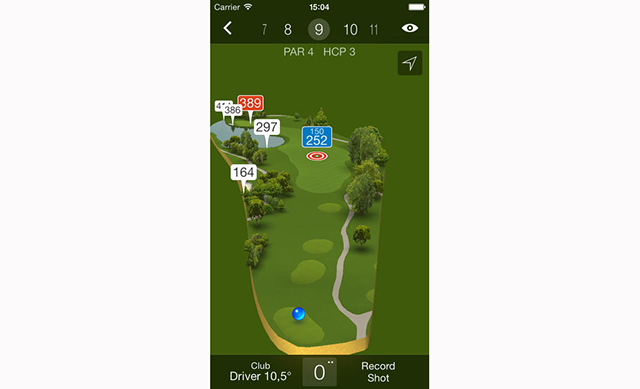
-

Take a peek into the world of Microsoft with Snaps
Publié: mai 23, 2014, 9:42am CEST par Wayne Williams
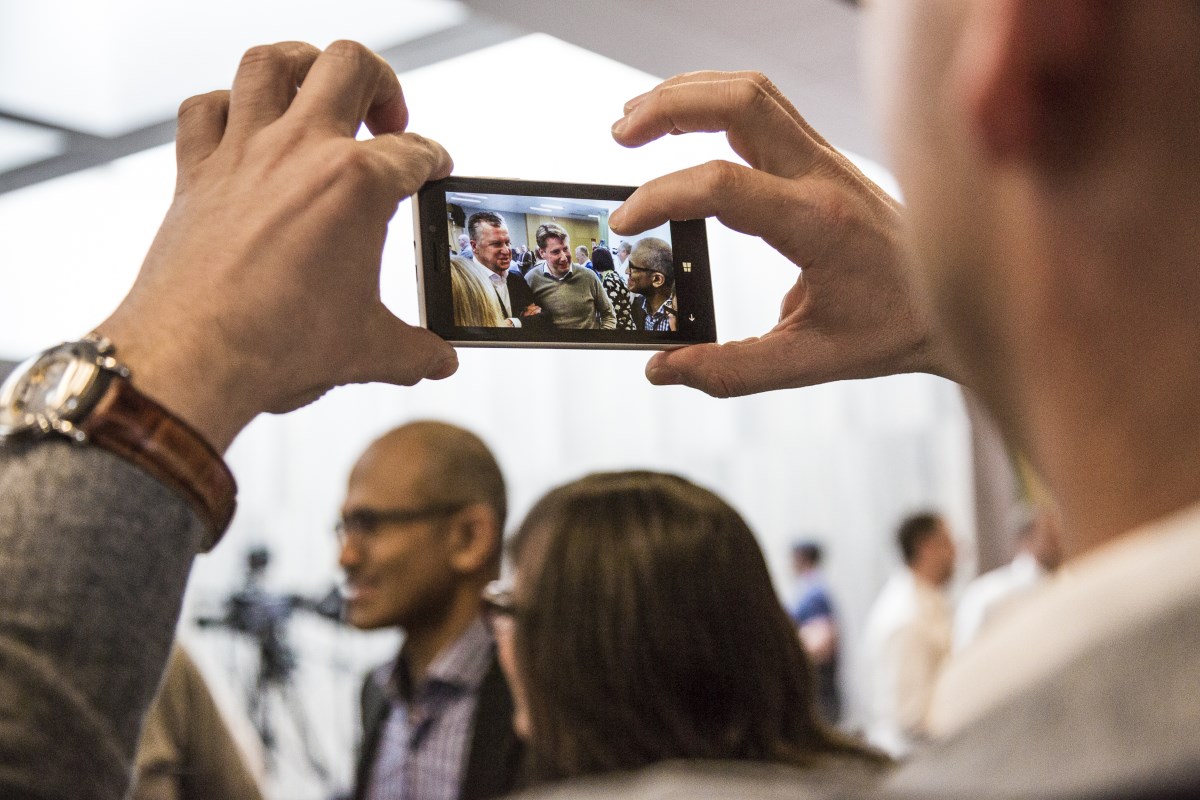
Microsoft has created a new website to showcase the best photography from around the world… of Microsoft. It’s an arty look into life in and around the tech giant’s Redmond, Wash. Campus, and highlights just some of the people who work there.
Shots include employees playing cricket, having lunch, and a photo of Satya Nadella on his first day as Microsoft CEO.
So why has Microsoft put this site together? According to Steve Wiens, Editor, Microsoft.com/Stories: "A few weeks ago, the Microsoft Stories team noticed something. With every amazing person we meet, and every epic moment we cover, our family photo album gets a little thicker. In fact, it’s pretty much bursting at the seams. So we’ve created a new place where we can share our favorite photos from the world of Microsoft with you. We’re calling it Snaps. Take a peek and let us know what you think!"
There aren’t many photos on the site at the moment, but more will be added over time.
-

Apple removes popular marijuana growing game 'Weed Firm' from App Store
Publié: mai 21, 2014, 10:49pm CEST par Wayne Williams

Weed Firm is one of those games, like Flappy Bird before it, that took the App Store by storm, reaching the number one spot purely through word of mouth. The trouble for Apple is the game follows the "vicious and lawless career of Mr. Ted Growing", an expelled botany sophomore, and is essentially a marijuana growing sim in which you produce and sell different types of weed, and interact with various shady characters including cops, gangsters, druggies and dancers. Not exactly the sort of game Apple really wants to see at the top of its charts.
It was perhaps a surprise that the Breaking Bad inspired app made it through Apple’s rigorous, and at times prudish approvals process in the first place, but having flourished far too well at the top, it was only a matter of time before it was hacked down. The game, inevitably, is no longer available in the App Store.
There seems little question who is behind the disappearance of the popular app. As the game’s developer, Manitoba Games, explains on its website:
As you might have noticed the game is no longer available on the Apple App Store. This was entirely Apple's decision, not ours. We guess the problem was that the game was just too good and got to number one in All Categories, since there are certainly a great number of weed based apps still available, as well as games promoting other so-called 'illegal activities' such as shooting people, crashing cars and throwing birds at buildings.
The developer goes on to explain that "We do not want kids playing Weed Firm, but we firmly believe that adults should have a choice to do whatever the hell they want as long as they are not hurting anybody in the process" and promises that the game will be back, albeit in a slightly modified form to appease Apple.
Although the game was free, there were the usual in-app purchases available, so you could improve your drug yield by purchasing equipment like watering cans, pots, and boosters. Business Insider estimated the app was pulling in around $83,832 a day before being booted from the App store.
The game has also been removed from Google Play, but that is down to a publisher problem and not any content issues with the Play Store, according to Manitoba Games.
Plans are already well underway for a sequel. "Weed Firm 2 will feature updated and improved graphics and gameplay, completely new locations, magic mushrooms, new characters, obviously, and much, much more!" the developers say. Although whether it will make it into the App Store remains to be seen.
-

PQChat secures your communications using quantum computing-proof encryption
Publié: mai 20, 2014, 4:50pm CEST par Wayne Williams
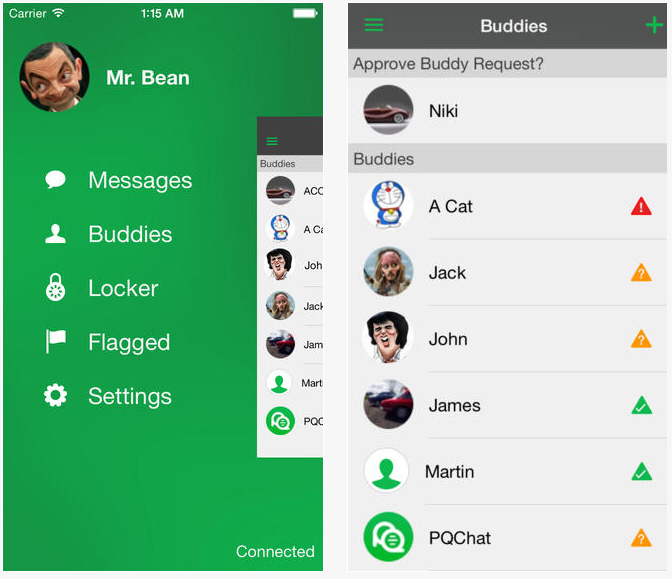
After Edward Snowden’s many (and on-going) revelations, it’s easy to think there’s not much you can really do to avoid being spied upon or prevent your communications potentially being monitored. Of course you probably don’t have much to hide, and therefore what you say isn’t likely to be of major interest to the NSA or other snoopers, but that doesn’t mean you shouldn’t at least try to maintain a degree of privacy where possible.
SRD Wireless has today announced the launch of PQChat, a free app for iOS based on SRD’s own Never-The-Same (NTS) encryption which protects data using the McEliece cryptosystem, the strongest currently known, and which has never been broken (as far as anyone is aware, at least).
PQChat lets users share and delete encrypted messages, voice, video and images, and the application doesn’t store personal information either.
"The ongoing Snowden revelations have brought home just how easily accessible our personal information is to the NSA or other groups. Yet most people are still handing over information to data miners, spammers and criminals without understanding what they are doing," says Andersen Cheng, Co-founder and CEO of SRD Wireless. "People need to take back control of their data: even the smallest amount of personal information can compromise your privacy and security. Modern communication tools simply aren’t built with this as a priority and so make compromises in order to allow communication. Our aim with PQChat is to place end-to-end security at the heart of the application".
The app boasts the following features:
- Minimal user information: PQChat only stores a one-way encrypted value of the user’s phone number, which cannot be reconstructed, plus an encrypted user-supplied nickname and pseudo ID image; making the user’s identity impossible to determine.
- User-defined passwords: PQChat allows users to set their own Master Password to sign up to the service, as well as a 5-digit alphanumeric PIN. PQChat does not even store the Master Password in the app, meaning that users have complete control over their own security.
- Video and Voice authentication: To ensure a message recipient is who they claim to be, PQChat uses SRD’s patented Man At The End (MATE) authentication. By providing a video and audio authentication message, users can be certain of each other’s identity.
- Locker: To guarantee that important information isn’t lost, PQChat includes a secure locker where users can store information that they want to guarantee it is kept safe and private.
- Complete control over messages: As well as sending, users can remotely delete messages, whether manually or after a particular length of time. Users can also be sent an acknowledgment to provide a guarantee that crucial messages have been seen and read.
"Even if an application or service claims to be secure, the data it holds still represents a risk," continues Cheng. "For example, if an application stores personal details then a security breach can put all users at risk. Apart from having zero knowledge of any message contents, SRD Wireless vows not to obtain, store or share any personal details or password information from PQChat users: it is our belief that ultimately your security should be in your hands, not ours. Since SRD’s business model is based around selling solutions to enterprises rather than data mining, there is no need for us to hold any of this information. Quite simply, if we cannot guarantee this trust between us and our users, then all of our claims about the security of PQChat itself are worthless".
PQChat is available immediately in the Apple App Store, with an Android version due to launch shortly.
-

Best iOS apps this week
Publié: mai 16, 2014, 3:36pm CEST par Wayne Williams
 Nineteenth in a series. iTunes was updated to version 11.2 this week. As my colleague Brian Fagioli reports, it's not the most exciting release with most changes relating to improvements to podcasts. It also fixes an annoying issue whereby iTunes could become unresponsive when updating Genius.
Nineteenth in a series. iTunes was updated to version 11.2 this week. As my colleague Brian Fagioli reports, it's not the most exciting release with most changes relating to improvements to podcasts. It also fixes an annoying issue whereby iTunes could become unresponsive when updating Genius.New and updated releases this week include an iOS port of classic indie PC game Thomas Was Alone, the official app of the National September 11 Memorial & Museum, a social network app that wants to be like a party, an arcade shooter, and a new app from FourSquare. RockMyRun has been updated too, and can now automatically adjust the speed of the music you're listening to so it matches how fast (or slow) you're running. There's a great travel app featured this week too.
As always, if I miss an app that you think should definitely have been included, let me know in the comments below, or drop me an email.
Here is my selection for this week.
Paid App of the Week
Thomas Was Alone ($8.99)
The classic indie PC platform game is now available for iPad. If you haven’t played it, I can definitely recommend it. You play as Thomas, a curious rectangle, and must guide him through 100 levels, avoiding gaps and hazards and encountering other characters. It’s the narration (voiced by Danny Wallace) that really makes the game.
The description, that it’s a "minimalist game about friendship and jumping" is spot on.

Free App of the Week
No one will ever forget the terrorist attacks of September 11, 2001. Ahead of its public opening on May 21, the National September 11 Memorial & Museum has released an iOS app with themed audio tours featuring stories from the day and the recovery at Ground Zero. The Witnessing History Tour, narrated by Robert De Niro, is particularly poignant. There’s a Discovering History Tour too, which is aimed at children aged 8-11.

Other Apps
"Could social networks be like parties?" That’s the question posed by this app which lets you create "firechats" -- live, anonymous group discussions based on your interests. You can switch between chats (as you would if at a party) and each firechat can include just a handful of people or ten thousand simultaneous users.
Firechats work even if no connection to the Internet or cellular phone coverage is available.
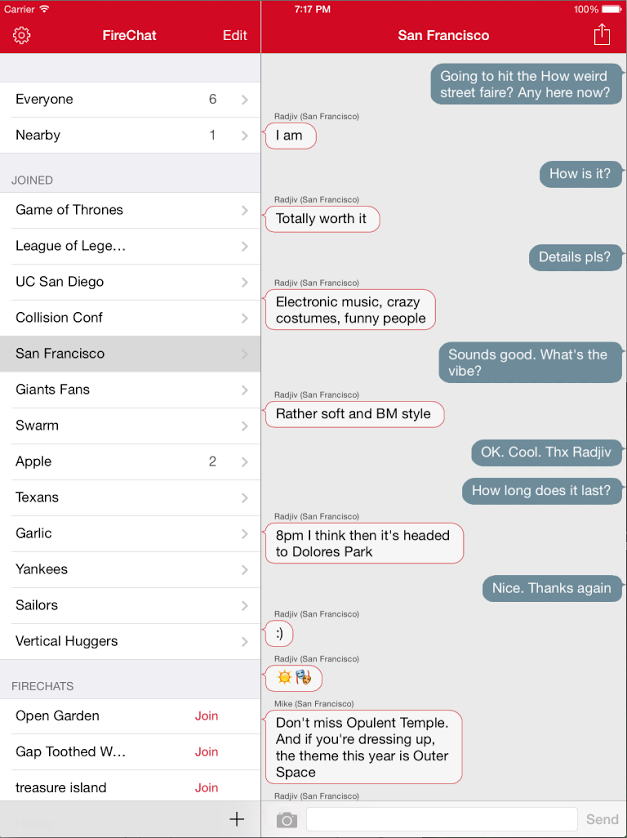
The latest build of the Vimeo app has a new look and feel, with a more lightweight design. You can get quick access to videos, feed, likes, and Watch Later queue, and view and edit video information quickly. Playback is much faster too.
JoyJoy ($1.99)
A twin-stick shooter from Radiangames, this offers some great old school arcade fun. Originally released on Xbox Live Indie Games a few years ago, the aim is to blast your way through wave after wave of attacks.
There are 24 unique waves and six intense challenges. You can upgrade your weapons, ship’s speed, armor, and special attack.
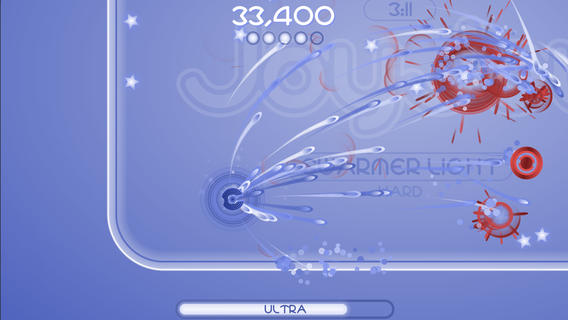
This new app from Foursquare provides a quick way to keep up and meet up with your friends. With Swarm, you can easily see who’s out nearby and who wants to hang out later.
You can share what you’re doing, check in somewhere, and message nearby friends with suggestions of fun things to do.

Offers in-app purchases.
This running app, which I’ve covered in depth before here, offers a large collection of mixes from various DJs, covering a wide range of genres -- 80s, 90s, Rock, House, Pop, Hip-Hop, Dubstep, Christian Rock, Oldies, and so on. The app is free, but upgrading to premium gives you access to longer mixes, and additional features.
The latest version of the app adds a MatchMe feature which detects the speed you’re running at, and syncs the beat of the music to your stride.
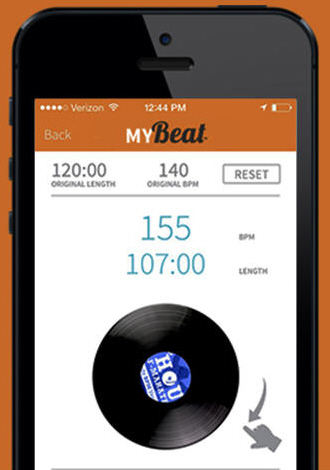
Apple’s App of the Week
Apple’s free app this week is a travel tool. If you’re thinking of booking a holiday, or just going away for a few days, KAYAK PRO can help you find the cheapest flights, hotels and car hire options. You can track your flight status and manage your trip itinerary too.

-

Start Menu Reviver -- not just another Start menu for Windows 8.x [Q&A]
Publié: mai 14, 2014, 2:57pm CEST par Wayne Williams
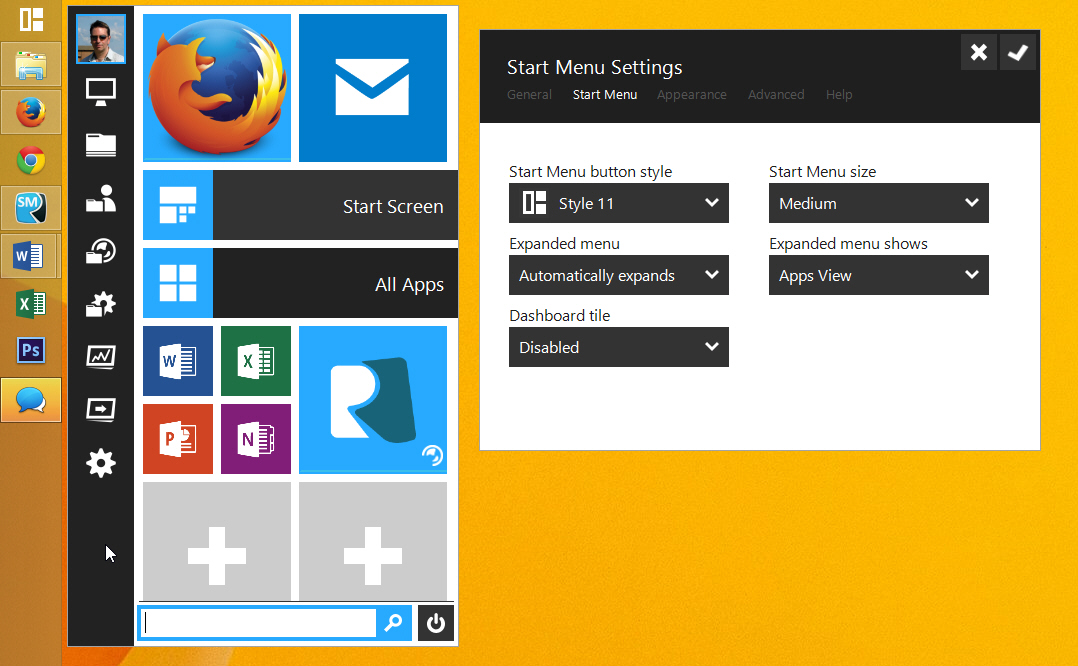
Removing the traditional Start button and menu from Windows 8 was a bold move for Microsoft. Unfortunately the tech giant underestimated just how attached to it users were. Rather than embracing the (slightly clumsy) full screen Modern UI, vast numbers of early adopters simply opted to install one of the many Start menus made available by third-party developers.
While most of these programs are straight copies of the Windows 7 Start menu, ReviverSoft has chosen to go down a different route with its product. Start Menu Reviver is a Modern-UI styled touchscreen-friendly Start menu that’s been designed to look as if it’s part of Microsoft’s OS. The recently released Start Menu Reviver 2 improves on the first edition by offering a sleeker design, greater customization, and a Windows 7 mode. I spoke to Davide De Vellis, co-founder of ReviverSoft, about Start Menu Reviver and what he thinks about Microsoft’s plans to introduce a Start menu of its own in a future Windows 8.x.update.
BN: There are lots of Start menus available for Windows 8.x, what makes your one different?
DDV: Taking just one look at Start Menu Reviver, the difference is obvious. We've taken the best of Windows past and combined the direction of Windows' future, and the result is a Start menu that many have said should have been the menu Microsoft included in its first release of Windows 8. Start Menu Reviver has the familiarity of a launch pad that people would expect from a Start menu on the Desktop, and we've used Microsoft's modern design styling by employing tiles that is quintessentially Windows 8. Where others have looked to the past and simply replicated the old Windows Start menu, we have looked to the future and designed a Start menu truly for Windows 8.
BN: What are the benefits of Start Menu Reviver?
DDV: Apart from bringing the Start menu back to the Desktop, we see the key benefits of Start Menu Reviver to be:
- Tile based menu structure is unique and truly touch friendly. Have you tried to use a Windows 7 style Start menu on a touch screen device? It's almost impossible (unless you have pin fingers).
- The tiles allow you to not only pin apps (desktop and modern) to your Start menu, but also your favorite files, folder and websites. That's right, you can launch your favorite websites directly from Start Menu Reviver.
- Start Menu Reviver is fully customizable. From the menu color scheme, to the tile destinations, to the tiles themselves. We built Start Menu Reviver so you can Start your way!
- Most other Start menus for Windows 8 restrict access to the Start Screen and Modern apps. The start screen (and Modern apps added as tiles) are directly accessible from Start Menu Reviver.
- Powerful search functionality accessible directly from Start Menu Reviver lets you access anything on your computer from files, to windows tasks, to apps.
BN: Why did you decide to create a Start menu that’s so unlike the others out there?
DDV: ReviverSoft is all about helping customers love their computers again. When we saw Windows 8 we knew that people were going to miss the Start menu. That being said, we also understand what Microsoft has set out to achieve with the new Modern design style of Windows 8 and so when thinking about how we would design Start Menu Reviver we knew that we wanted to complement Microsoft's vision, not work against it. Not only was it design though, it was also functionality. When you think about touch screen devices, we knew that we needed to design a Start menu that was not only navigable by mouse and keyboard, but also by touch. So, for us it was a no-brainer that we needed to employ a tile based structure, which had the launchpad familiarity of the traditional Start menu. We really do think we've done a great job of combining the best of the old with the direction of the new.
BN: Why do you think so many people prefer a Start menu to the Start screen?
DDV: I think familiarity is definitely key. People are familiar with utilizing a Start menu as the launch pad for their activities on the desktop. In the first iteration of Windows 8, when people hit the desktop and then had no familiar button for what they wanted to do next, they were lost. The introduction of the Start button was a move in the right direction, but again Desktop users aren't as familiar with having to navigate the Start screen to perform tasks on the desktop side of Windows 8. And trying to navigate the Start screen with a mouse is a bit of a pain, let alone having to scroll through all of the different apps just to find the one you’re looking for.
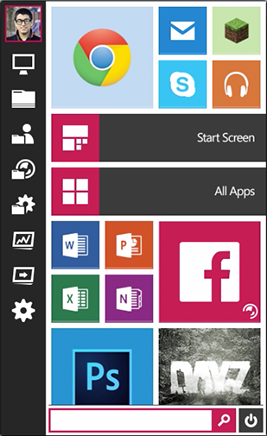 BN: Microsoft is set to bring back the Start menu in a future Windows update. Do you think this will impact on the need for your product?
BN: Microsoft is set to bring back the Start menu in a future Windows update. Do you think this will impact on the need for your product?DDV: Given the noise being made by Windows users, we always knew it was inevitable that there would be a re-introduction of a Start menu in some capacity in future versions of Windows 8, we just weren't sure when or how. Basically, we think it makes sense. The good thing for us is that we aren't a Start menu company. We built Start Menu Reviver to deliver on our brand promise -- to help customers love their computers again. Start Menu Reviver is free and so it's not going to impact our business when Microsoft releases its Start Menu. We will continue to support Start Menu Reviver and if people choose to use our product over whatever iteration of a Start menu Microsoft decides to bring back, whenever it finally does, then that's awesome.
BN: What plans do you have to make Start Menu Reviver even better?
DDV: A couple of features we were hoping to get into the recent release of Start Menu Reviver 2, but were left out due to time constraints, include the ability to launch Metro apps on the desktop. We are also working on live tiles in Start Menu Reviver and a more extensive tile library that will allow for greater personalization. What we've loved about launching Start Menu Reviver is the positive reception from users and the awesome feedback we've received. Many of the improvements in Start Menu Reviver 2 have come from user feedback and we expect that what you see in Start Menu Reviver 3 will also be a result of what our users are asking for.
-

iStick is a USB flash drive with integrated Apple Lightning connector
Publié: mai 14, 2014, 9:51am CEST par Wayne Williams
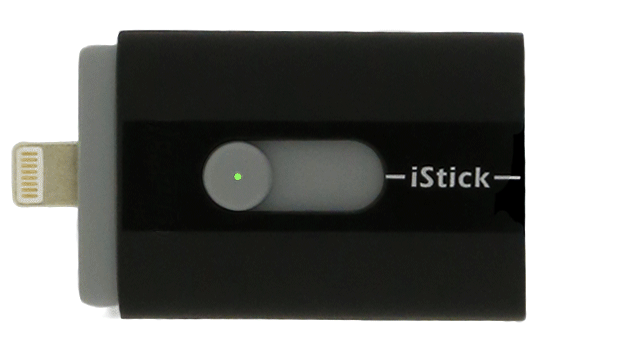
Transferring files between an iPhone and iPad is easy. If you’re running iOS 7 on both devices you can use the AirDrop feature. Transferring files from an Apple device to a PC (and vice versa) is trickier though, and often involves emailing them, or using a cloud drive.
iStick is a clever solution that functions as a USB flash drive, but comes with a Lightning connector on the opposite end, allowing it to be used with iPhones, iPads and iPod touches. As well as transferring files between devices, you can play music or watch movies directly from the iStick.
The flash drive measures 51.6 x 28.6 x 9.1mm, and is offered in various colors and storage capacities -- 8GB/16GB/32GB/64GB/128GB. You can choose from ABS plastic and aluminum, or all aluminum. It’s USB 2.0 only at the moment unfortunately (the creators say implementing USB 3.0 would involve redesigning the drive).
iStick is currently available on Kickstarter where a $79 pledge will net you an 8GB plastic model (Facebook or Tweet about it and you’ll get a free upgrade to the all-aluminum version). That might seem a little expensive, but the full retail price will be $129, so it’s actually a $50 saving. Free shipping to the US is included -- international purchasers will need to add $10. Obviously higher pledges will get you a larger capacity drive -- $299 for a 128GB model, for example ($100 off the retail price).
There’s clearly a huge demand for a USB flash drive with Lightning integration because the creators were seeking $100,000 in funding and have already received pledges of $309,000, with 34 days still to go. Most Early Bird Specials (offering iSticks for a discounted rate) have already been snapped up.
-

Dropped your phone in the toilet? DryBox Rescue can save it in under 30 minutes [Q&A]
Publié: mai 13, 2014, 4:44pm CEST par Wayne Williams
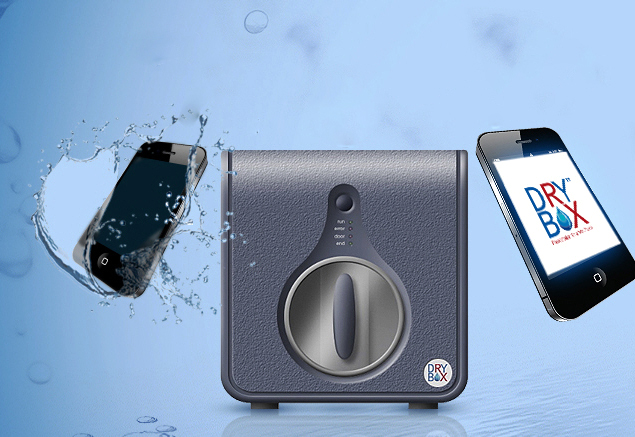
Did you know the average person spends 23 full days a year using their mobile phone? That is around ninety minutes every day. Smartphones have become lifelines for many. What if you were to drop your phone in a toilet and lose everything on it? This nightmare will occur for nearly 100,000 cell phone users in the US every day who will damage their phone just by dropping it in water.
An American inventor has created a cost effective solution. DryBox Rescue is a machine designed to completely dry your phone of all moisture in 30 minutes even 2-3 days after getting it wet. I spoke to David Naumann, Partner/Managing Partner at DryBox to find out more about how it works, and what’s next for the company.
BN: How does DryBox work?
DN: Our patent-pending drying chamber rapidly removes moisture at the molecular level.
BN: Can DryBox dry out and rescue every wet phone?
DN: DryBox Rescue provides an over 70 percent success rate when wet phones are dried in our machine within 36 hours of getting wet.
BN: Can it save phones from other liquids, other than water?
DN: Yes. Depending on the liquid, the device may need to be rinsed/washed off to clean the device, just make sure that it is powered off first. Remember, the device has already gotten wet and the warranty is already void.
BN: Can DryBox dry other electronic devices?
DN: Yes, any small electronic device; iPods, MP3 players, key fobs, point & shoot cameras, hand held game devices, GPS units, etc. Our new self-service kiosk unit will accommodate any device under 7in in width.
BN: What is the common cause of a phone getting wet?
DN: We have seen a wide variety of causes, but the most prevalent ones are swimming pools, toilets, lakes, rain/puddles and washing machines.
BN: What should people do/not do after their phone gets wet?
DN: We recommend the following steps.
- Remove the battery (if possible).
- Do NOT charge phone or try to power it back on!
- Bring phone and charger to a DryBox Rescue station ASAP.
- DO NOT TRY RICE!
BN: Do you see certain phones being brought in more than others?
DN: We see a wide assortment of devices, but the trend has certainly followed the growth of smartphones, as we are seeing more smartphones than basic or feature phones at this point.
BN: How many authorized dealers are offering DryBox now?
DN: We have 20 authorized locations across the United States at this time, and will soon be adding our self-service kiosk units.
BN: What expansion plans do you have?
DN: With the addition of our new self-service kiosk unit, we plan to eventually offer our service at a few thousand locations in the United States, as well as international locations. Our plan is to be able to offer the service at locations that are close and convenient to the majority of the population.
-

Office for iPad apps have been downloaded 27 million times in 46 days
Publié: mai 13, 2014, 9:44am CEST par Wayne Williams
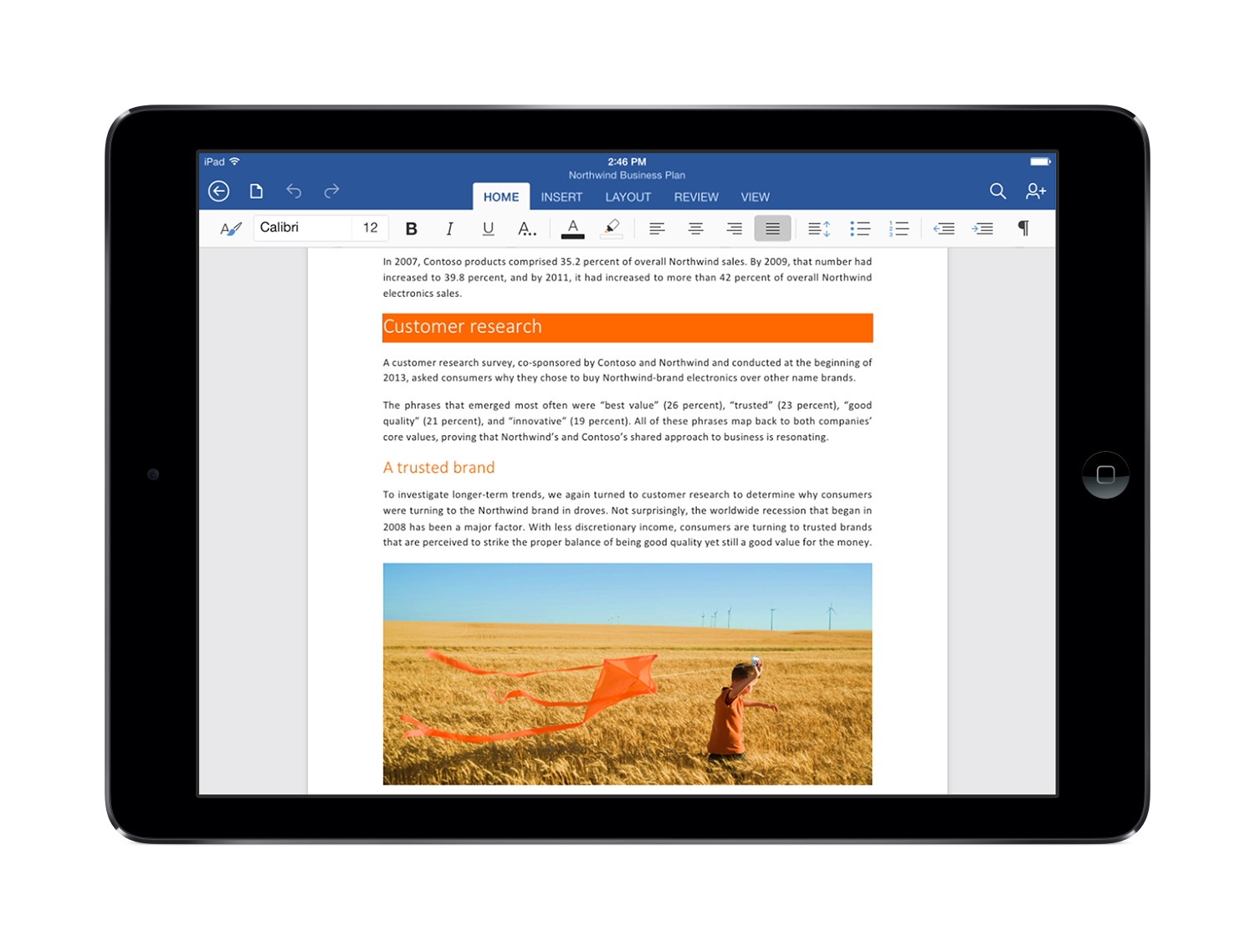 Despite the presence of iWorks and numerous other productivity suites on iPad, many users were hoping Microsoft would eventually roll out a version of Office for Apple’s tablet. The biggest sticking point was Surface -- Microsoft’s suite is, after all, one of that tablet’s biggest selling points, and providing Office for rival devices could prove risky.
Despite the presence of iWorks and numerous other productivity suites on iPad, many users were hoping Microsoft would eventually roll out a version of Office for Apple’s tablet. The biggest sticking point was Surface -- Microsoft’s suite is, after all, one of that tablet’s biggest selling points, and providing Office for rival devices could prove risky.At the end of March, Microsoft responded to the demand by releasing free iPad apps for Word, Excel and PowerPoint and tackled the Surface issue beautifully. The apps are excellent, fully touch optimized, and designed from the ground up to run on an iPad. But they require you to have Office 365 to create or edit documents, which isn’t a restriction Surface users have to worry about.
The apps were an instant hit, immediately rocketing to the top of the free charts, and racking up a whopping 12 million downloads by early April. On Monday, Microsoft's Julia White told the crowd at the TechEd conference in Houston that the apps have been downloaded a further 15 million times, for a grand total of 27 million -- in just 46 days.
To save you doing the math, that works out to around 587,000 downloads a day.
The apps are must haves for iPad owners with an Office 365 subscription (and they work very well as document viewers if you don’t have a subscription) but it will be interesting to see if the demand continues over time. Word currently lies at number 4 in the free charts, with Excel at number 26 and PowerPoint at 35 -- so their popularity looks to be on the wane slightly.
-

Another Windows security reprieve -- Microsoft gives 8.1 users a further month to install Update
Publié: mai 12, 2014, 4:24pm CEST par Wayne Williams
 Windows 8.1 Update makes the tiled operating system more mouse and keyboard friendly, and while it takes a little getting used to at first, the changes are mostly for the better -- in my opinion anyway.
Windows 8.1 Update makes the tiled operating system more mouse and keyboard friendly, and while it takes a little getting used to at first, the changes are mostly for the better -- in my opinion anyway.Microsoft has made the update mandatory, and in an effort to ensure people install it swiftly (thus avoiding the situation where there are customers out there running Windows 8, Windows 8.1 and Windows 8.1 Update) made it even more essential by stating that all future security patches, starting with those released tomorrow as part of Microsoft's monthly "Patch Tuesday", will require Update to be installed. In other words, if you haven’t installed the Update, your system could be at risk.
The problem is not everyone has Windows Update switched on, or set to install the latest fixes and patches as soon as they arrive. So Microsoft has decided to allow users a little extra time to catch up.
"While we believe the majority of people have received the update, we recognize that not all have. Having our customers running their devices with the latest updates is super important to us. And we’re committed to helping ensure their safety", the company says in a new blog post. "As a result, we’ve decided to extend the requirement for our consumer customers to update their devices to the Windows 8.1 Update in order to receive security updates another 30 days to June 10th".
Consumers who have not updated Windows 8.1 by this new deadline will no longer receive security patches. Unless Microsoft changes its mind again...
Image Credit: iQoncept/Shutterstock
-

Google testing a radical Gmail redesign
Publié: mai 12, 2014, 9:23am CEST par Wayne Williams
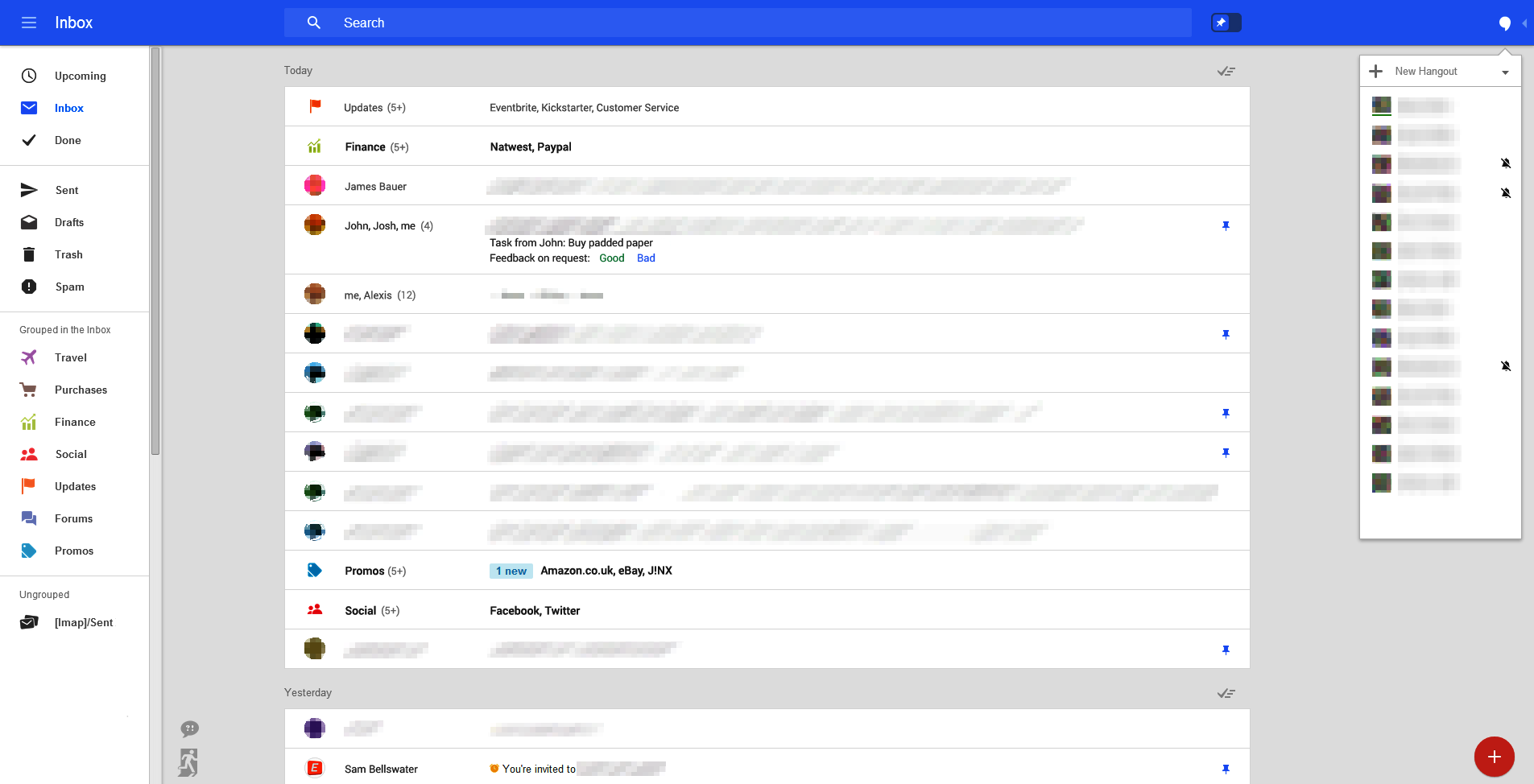
Although a lot of people don’t really like Gmail’s web interface, I’ve never had a problem with it. Once you’ve learned your way around, the UI is functional and you can customize the look with themes, and even your own images.
However, according to Geek.com Google is testing a redesigned interface for its web-based Gmail service. As with all tests, it’s possible the new look won’t see the light of day, but the design appears very polished, and barring a few cosmetic tweaks I think there’s a very good chance it will replace the current UI at some point in the future.
The screenshots show a very different interface, which is designed for any size of screen. Geek.com says there’s a fly-in menu system on the left, with the tabs that were introduced last year (including Social, Promos and Updates) displayed there. Other groups include Travel, Purchases, Finance, and Forums.
Hangouts are in a collapsible pane on the opposite side and there are email and reminder creation bubbles at the bottom right, and an over-sized search box at the top.
Stars look to be replaced with a pin system, so you can pin important messages.
The new UI has a more modern feel to it, and I really like it. You can read more and see additional screenshots over at Geek.com.
-

Best iOS apps this week
Publié: mai 9, 2014, 2:54pm CEST par Wayne Williams
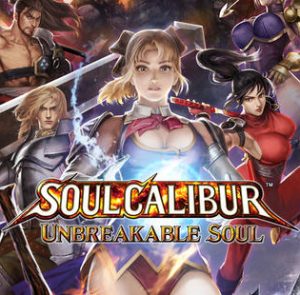 Eighteenth in a series. New and updated releases this week include a Vine-style video sharing app with filters, an animated story creator from Adobe, new games set in the Warhammer 40k and Soulcalibur worlds, a social network for dog owners, a fitness app that promises to "lift your butt" and an endless runner that gives you the chance to watch your friends being trampled by bulls.
Eighteenth in a series. New and updated releases this week include a Vine-style video sharing app with filters, an animated story creator from Adobe, new games set in the Warhammer 40k and Soulcalibur worlds, a social network for dog owners, a fitness app that promises to "lift your butt" and an endless runner that gives you the chance to watch your friends being trampled by bulls.As always, if I miss an app that you think should definitely have been included, let me know in the comments below, or drop me an email.
Here is my selection for this week.
Paid App of the Week
Cinamatic ($1.99)
Offers in-app purchases.
Hipstamatic’s new video sharing app lets you record short clips and share them with friends on Facebook, Instagram or Vine. Recordings are limited to 15 seconds and you can apply live filters to make the results look stylish/awful. You get five filters included, and can purchase additional ones in-app. The prices of the filters/filter packs vary from $0.99 up to $3.99.
It requires iOS 7+ and has been optimized for the iPhone 5.
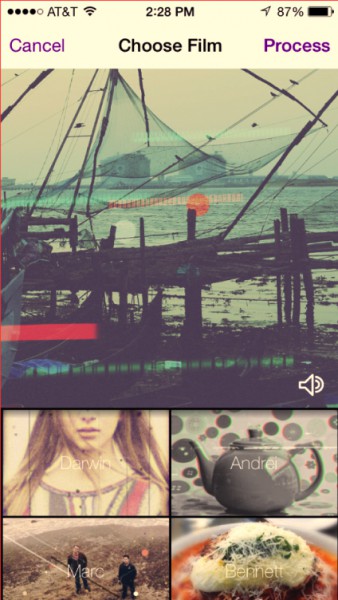
Free App of the Week
Adobe Voice allows users to create animated slideshow-based video stories based on their own narrated scripts. Each slide (or "page") consists of a recorded sentence or two, a choice of layouts and then a selection of text, icons or photos that are automatically animated and edited together into a single movie that can be played back or shared online.
You can read more about what the app offers and how it works here.
Other Apps
Warhammer 40,000: Carnage ($6.99)
Offers in-app purchases.
Set in the Warhammer 40,000 universe, Carnage is a brutal side-scrolling arcade shooter. You can play as either a legendary Ultramarine or Blood Angel, and fight your way through hordes of Orks and occasional bosses.
Each mission has three different challenges that completely change the game experience and there are over 500 items of wargear to acquire or upgrade to.
The developer, Roadhouse Games, says the Carnage looks best on iPhone 5S, iPad Mini Retina and iPad Air.
Offers in-app purchases.
Free to play, the classic weapon-based fighting game features an all new story in which Cassandra and the Edge Master must seek out fragments of the dreaded blade, Soul Edge.
There are 150 avatars, 200+ weapons, and a revamped battle system that makes it easier to play on a touch screen. A player vs. player mode is coming soon.
If you have a talent -- be it singing, computer programming, or crafting -- you can make a little extra cash from it by advertising your service on Fiverr. As the name of the site suggests, most offers are priced at $5.
The iOS app has been around for a while, but has been updated to offer a handy new "Who’s Online" function that shows buyers which sellers are available to communicate with while transacting.
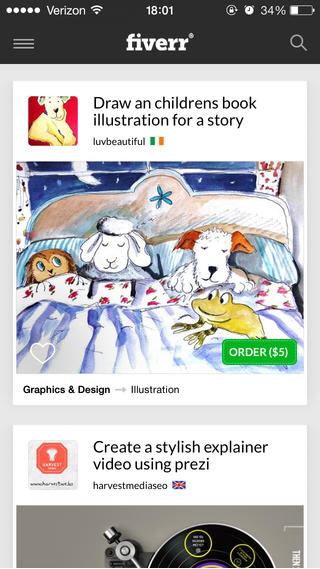
Booty Slide Fitness App ($1.99)
Celebrity trainer Rebecca Kordecki has (apparently) been the go-to trainer for Los Angeles and New York celebrities, athletes and others for over 18 years. Her Booty Slide Fitness app is designed to help strengthen your core or reshape and lift your butt in a low impact way (and who doesn’t want a lifted butt, right?). The app features 21 Booty Slide exercises that can be mixed and matched to create 20, 40, or 60-minute workouts.
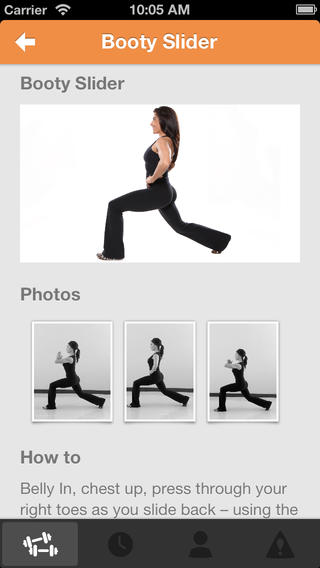
The purpose of this app is to help dog owners connect and socialize -- share photos of their beloved pooches and find convenient pet services nearby -- and it has just gained a new messaging feature which allows for one-to-one communication between dog lovers. They aren’t just limited to their local network either; they can also connect and message other dog owners from around the world.
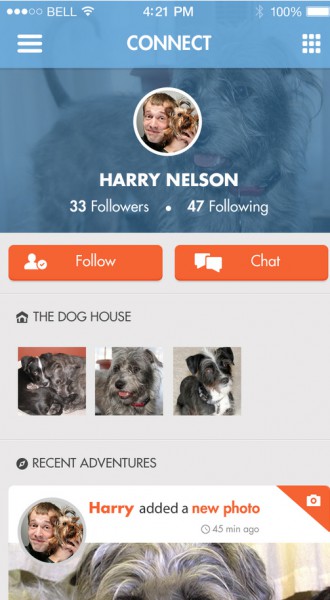
Apple’s App of the Week
Offers in-app purchases.
After last week’s excellent note taking tool, we’re back to Apple offering a game as this week's free app. As you can probably guess from the name, this is an endless runner, with the aim being to try and out pace the pursuing bulls for as long as possible.
There are the usual fun locations to run through, stars to collect, and bonuses to be had.
What makes StampedeRun more fun than other similar apps is you can invite your friends to join you in the races.
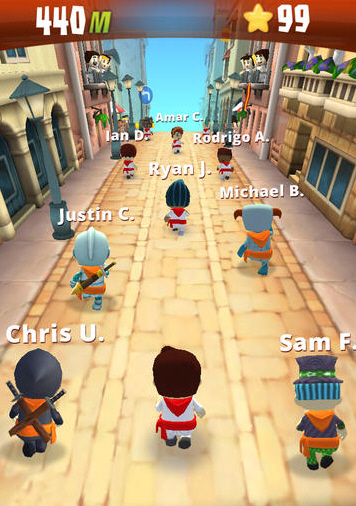
-

The scale of Windows 8.x’s failure is staggering
Publié: mai 8, 2014, 6:08pm CEST par Wayne Williams
 Once a month I report on the desktop operating system market share using data from NetMarketShare. The changes in fortune between the different flavors of Windows is usually fairly minimal -- a percentage point gained here, a percentage point lost there. And usually the rise or fall is a lot less than one percent, although as a month is quite a small time scale to measure market share changes over, and we’re talking about millions and millions of Windows users, that’s to be expected.
Once a month I report on the desktop operating system market share using data from NetMarketShare. The changes in fortune between the different flavors of Windows is usually fairly minimal -- a percentage point gained here, a percentage point lost there. And usually the rise or fall is a lot less than one percent, although as a month is quite a small time scale to measure market share changes over, and we’re talking about millions and millions of Windows users, that’s to be expected.I decided, out of curiosity, to take a look at what a year’s worth of market share variations would look like, using StatCounter’s Global Stats, and the results were less than thrilling, with the different operating systems showing very little change. In May 2013, Windows 7 had 56.27 percent. 12 months later it is on 55.03 percent. A drop of just 1.24 percent. Windows XP fell 6.73 percent, while Windows 8.x grew 8.16 percent. The pattern is clear -- Windows 8.x sales look to be coming from upgrades (mainly XP) but people are mostly sticking with their older operating systems. Open up the time scale however, and a more dramatic -- and damning -- picture emerges.
In July 2008 (when StatCounter started recording OS share) XP dominated the market with 75.07 percent. Today it sits on 15.84 percent -- a drop of 59.23 percent. But while XP was tumbling, Windows 7 was rising at a meteoric rate. It’s a clear upgrading picture -- one OS ceding to another, newer one. That picture is totally absent when you look at the impact that Windows 8.x has had.
From launch on October 26 2012, Windows 8.x took 18 months (with a little rounding up) to get to where it is now -- 13.73 percent. 18 months after it launched on October 22 2009, Windows 7 was at 33.22 percent. At the rate it’s going (an average of 0.76 percent a month), Windows 8.x will take another two years to reach that mark, assuming users of other operating systems (Windows 7 and XP) decide they want to make the switch. Of course, the keyboard and mouse friendly improvements added in Windows 8.1 Update could see the tiled OS pack on market share at a faster rate, but it's too early to know.
We can make excuses for Windows 8.x failure -- Windows 7 followed an unpopular OS, people were looking to upgrade from XP, and tablets didn’t exist when Windows 7 launched. And of course that’s all true. But here’s the thing -- Microsoft’s desktop dominance has only lost three percent in six years and is still at around 88 percent (most of that erosion is down to OS X). Remember, we’re talking about desktop market share, not users.
Need a bit more convincing about the scale of Windows 8.x failure? Let’s look at the unpopular Vista. In the 18 months after it launched on Jan 30 2007, it had 16.87 percent market share, 3 percent more than Windows 8.x has now.
Sure, it could be argued that people were clearly keener to upgrade from XP than they are to upgrade from Windows 7 (XP was a little over five years old at that point), but that’s a weak argument.
No matter what you have, if someone offers you something better you’ll likely take it. And if you perceive it to be worse, you’ll leave it. Windows 8.x's slow growth, and Windows 7’s rock solid market share make it pretty clear what people think of Microsoft's "New Windows".

Image Credit: mrdoggs/Shutterstock
-

Google Nest -- not real, but it could be
Publié: mai 8, 2014, 12:06pm CEST par Wayne Williams
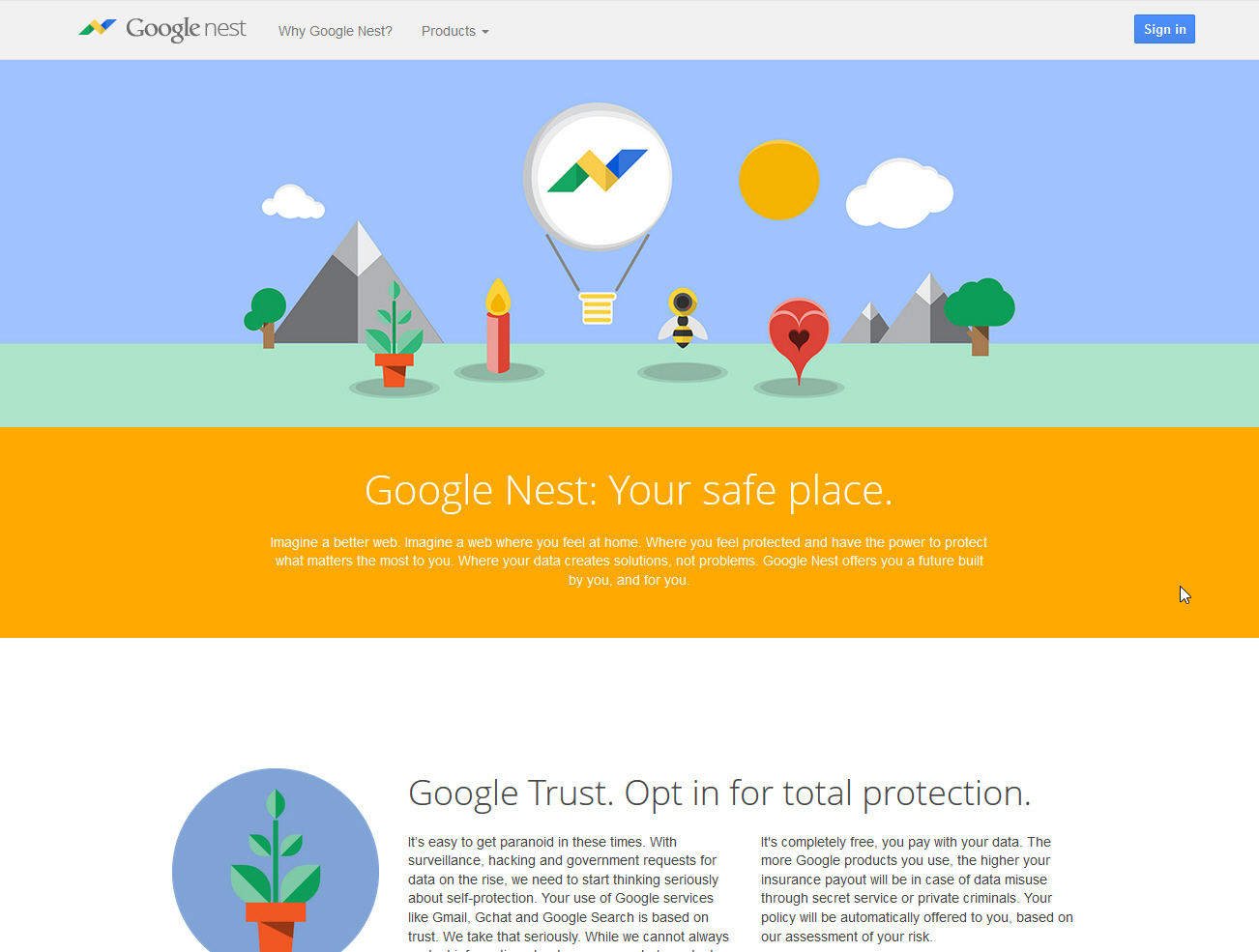
Google acquired smart hardware company Nest Labs at the beginning of the year as part of its move into the home. The Internet of Things is set to be big in the coming years, and Google inevitably wants a slice of that pie.
A new site, Google Nest, has been launched that showcases a number of new Google products created off the back of that purchase, and which are "for living life on the web with ease and comfort" while at the same time restoring "confidence in the opportunities the internet offers". The new products are Google Trust, Google Hug, Google Bee and Google Bye. It all looks very convincing, but it’s actually a parody site set up to take a well-aimed shot at Google’s sometimes questionable policies and practices.
The Google Nest introduction asks you to "Imagine a better web. Imagine a web where you feel at home. Where you feel protected and have the power to protect what matters the most to you. Where your data creates solutions, not problems. Google Nest offers you a future built by you, and for you". It is, in short, "your safe place".
The products featured on the site are:
 Google Trust -- The world’s first model for data insurance. It’s free -- you pay with your data and the more Google services you use, the higher your insurance pay-out will be should your data be misused by criminals or government agencies.
Google Trust -- The world’s first model for data insurance. It’s free -- you pay with your data and the more Google services you use, the higher your insurance pay-out will be should your data be misused by criminals or government agencies. Google Hug -- Google knows when you’re not feeling at your best and helps you find others nearby who have the same needs as you so you can reach out to them for a little human interaction.
Google Hug -- Google knows when you’re not feeling at your best and helps you find others nearby who have the same needs as you so you can reach out to them for a little human interaction. Google Bee -- The first personal drone that watches over your house and family while you are away, following everyone’s every move and recording and collecting personal data.
Google Bee -- The first personal drone that watches over your house and family while you are away, following everyone’s every move and recording and collecting personal data. Google Bye -- Acts as a memorial to you after you die, "highlighting (in images, video, audio and text) your unique character, achievements and special moments from your life". This will be automatically shared with all your contacts and live on in Google Search.
Google Bye -- Acts as a memorial to you after you die, "highlighting (in images, video, audio and text) your unique character, achievements and special moments from your life". This will be automatically shared with all your contacts and live on in Google Search.Despite looking like a real Google site, with a convincing(ish) URL -- [google-nest.org] -- Google Nest is actually the work of German activist organization Peng Collective.
It will be interesting to see how long the site stays around for.
-

Smartwatches are not so smart after all -- the top problems users consistently face
Publié: mai 7, 2014, 6:01pm CEST par Wayne Williams
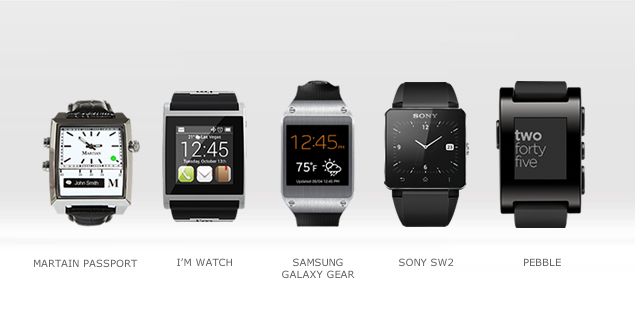
Love them or hate them, wearables are the future. Although right now the technology seems mostly limited to smartwatches. Take a look at Amazon’s new wearable tech store, and it’s clear watches (and fitness bands) are by far the most popular type of wearable being developed and sold at the moment.
However, just because a growing number of smartwatches are available to buy now, doesn’t mean they’re ready for the big time. In fact, a new report from Fixya suggests quite the opposite, with the popular product Q&A service highlighting consistent problems across all of the smartwatch brands.
The lack of uniformity in design and functionality in particular was seen as a major frustration: "Despite some overlap, there isn’t a consistent set of features across smartwatches; unlike the others, the Pebble doesn’t have a speaker, touchscreen or voice control; the Sony SW2 has a NFC chip and the I’m Watch tethers through Bluetooth, instead of using Wi-Fi, making connecting your device tricky and less intuitive".
The small screen sizes found on watches was also singled out as a problem, with the devices essentially just being used to remind users to check their phone to read emails and text messages.
Finally, speakers and voice control over phones were universally found to leave much to be desired, with experiences ranging anywhere from "relatively good to consistently horrible".
Fixya used information from over six thousand troubleshooting requests posted through its product Q&A site and iOS mobile app to discover the top five recurring issues across the smartwatch category. The top complaints were:
- Speaker degradation -- 15 percent
- Screen notification errors -- 15 percent
- Waterproofing -- 15 percent
- Bluetooth -- 10 percent
- Other -- 45 percent
"The idea of smartwatches has long predated their actual existence. Pop culture has had a romance with them for decades" says Fixya CEO and founder Yaniv Bensadon. "Our newest Fixya report looks at the biggest smartwatch models, to get a sense of how we’re faring on delivering a 'Jetsons' style smartwatch. The results show that we’re still figuring out a lot the basic concepts, and that a truly fully functional smartwatch has yet to come".
The company took a look at the Samsung Galaxy Gear, Martian Passport, I’m Watch Smartwatch, Sony SW2 and the Pebble, and the top five problems for each are as follows:
 Top 5 Samsung Galaxy Gear Issues:
Top 5 Samsung Galaxy Gear Issues:- Voice Control -- 35 percent
- Screen Notifications -- 25 percent
- Music Listening -- 10 percent
- Battery Life -- 10 percent
- Other -- 20 percent
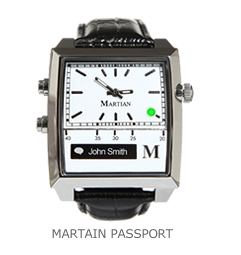 Top 5 Martian Passport Issues:
Top 5 Martian Passport Issues:- Speaker -- 25 percent
- Screen Notifications -- 25 percent
- Waterproofing -- 20 percent
- Bluetooth -- 15 percent
- Other -- 15 percent
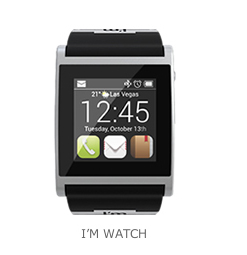 Top 5 I’m Watch Smartwatch Issues:
Top 5 I’m Watch Smartwatch Issues:- Bluetooth -- 30 percent
- Battery Life -- 30 percent
- Speaker -- 15 percent
- Software -- 15 percent
- Other -- 10 percent
 Top 5 Sony SW2 Smartwatch Issues:
Top 5 Sony SW2 Smartwatch Issues:- Battery Life -- 25 percent
- Compatibility -- 20 percent
- Screen Lag -- 20 percent
- Display -- 20 percent
- Other -- 15 percent
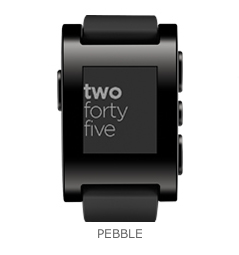 Top 5 Pebble Smartwatch Issues:
Top 5 Pebble Smartwatch Issues:- No Speaker/Voice Control -- 30 percent
- Control buttons -- 25 percent
- App Implementation -- 20 percent
- Battery Life -- 10 percent
- Other -- 15 percent
The full report can be found at [blog.fixya.com] -

Analogue Nt -- A luxury NES made from a solid block of aluminum
Publié: mai 7, 2014, 11:54am CEST par Wayne Williams
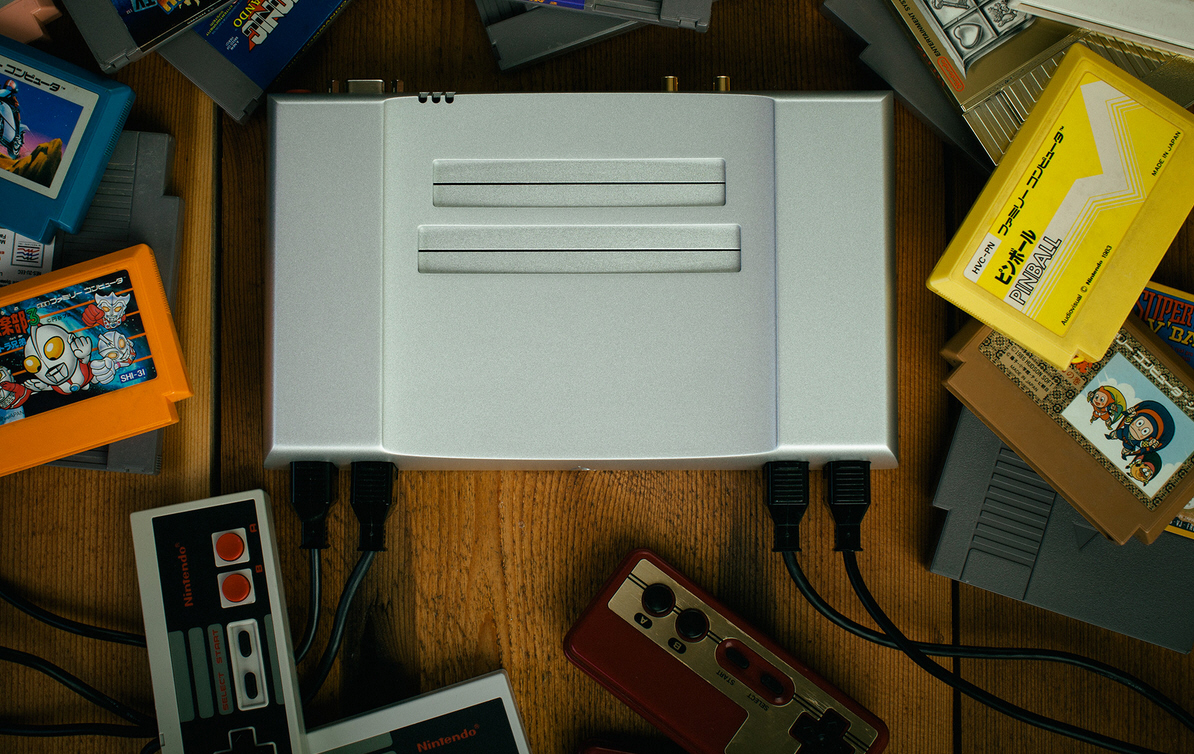
The Nintendo Entertainment System was the best console of its day and I still have very fond memories of playing classic games like Metroid, Mike Tyson’s Punch-Out and -- of course -- Super Mario Bros 3.
If you’re hankering after a little old school NES action, but scaled up to a more modern 1080p, Analogue Interactive’s Analogue Nt could be just what you’re looking for. It’s the original NES guts (Ricoh 20A3 CPU and Ricoh 2C02 PPU) packaged into a single, stylishly crafted solid block of 6061 aluminum. The result is a lovely modern, yet thoroughly retro, console.
The Analogue Nt has the same ports used in the original NES and includes the Famicom expansion port too, so it’s fully compatible with original NES and Famicom accessories.
The Analogue Nt is an RGB NES, producing high quality analog signals, but if you add the optional HDMI adaptor you can upscale the output to 720 or 1080p while preserving the original aspect ratio. It adds scanlines too, to make it look as if you’re viewing games on a CRT.
The Analogue Nt is available for preorder now (shipping date is estimated as "summer 2014"), priced at $499. Aside from the classic (naked aluminum) color, it will also be available in black, pink, blue or red for an additional $49. The HDMI Adaptor/upscaler will set you back an additional $49, and, if you don’t already have your own NES controllers, you’ll need to pick up those too -- the console supports up to four. A brand new NES controller will set you back $49, or you can buy refurbished NES or Famicom models for $29. There are various cables available to purchase too.
Oh, and you’ll need to add some games as well -- so dig out those original cartridges, or take a trip to Craigslist or eBay ...
Compatibility
- NES, Famicom, Famicom Disk System (via expansion port)
- Region Free
- Worldwide Compatibility (PSU: 50-60hz, 100-240 volts)
Video
- HDMI 1080p/720p (requires HDMI Adapter)
- RGB, Component and S-Video
- Composite
Audio
- Mono & Stereophonic Sound Effect (adjustable)
- Famicom Audio Support
Includes
- Analogue Nt
- AC Adapter
- AV Cable (composite & s-video)
Special features
- Original NES Ports
- 4 Player Compatibility (switchable between each region)
- Famicom Expansion Port
- Everdrive & Powerpak Compatibility
- Adjustable Color Palette (Classic, Modern & Arcade)
- Increased Power Delivery for 3rd Party Devices
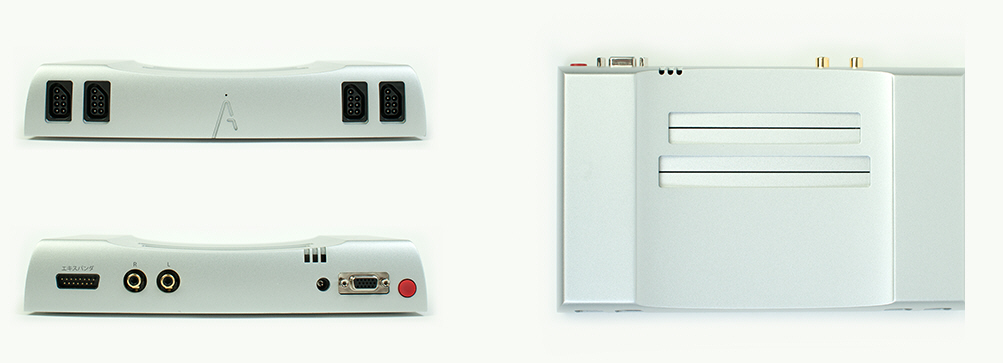
-

Control everyday household electronic devices with the D-Link Wi-Fi Smart Plug
Publié: mai 6, 2014, 11:17am CEST par Wayne Williams
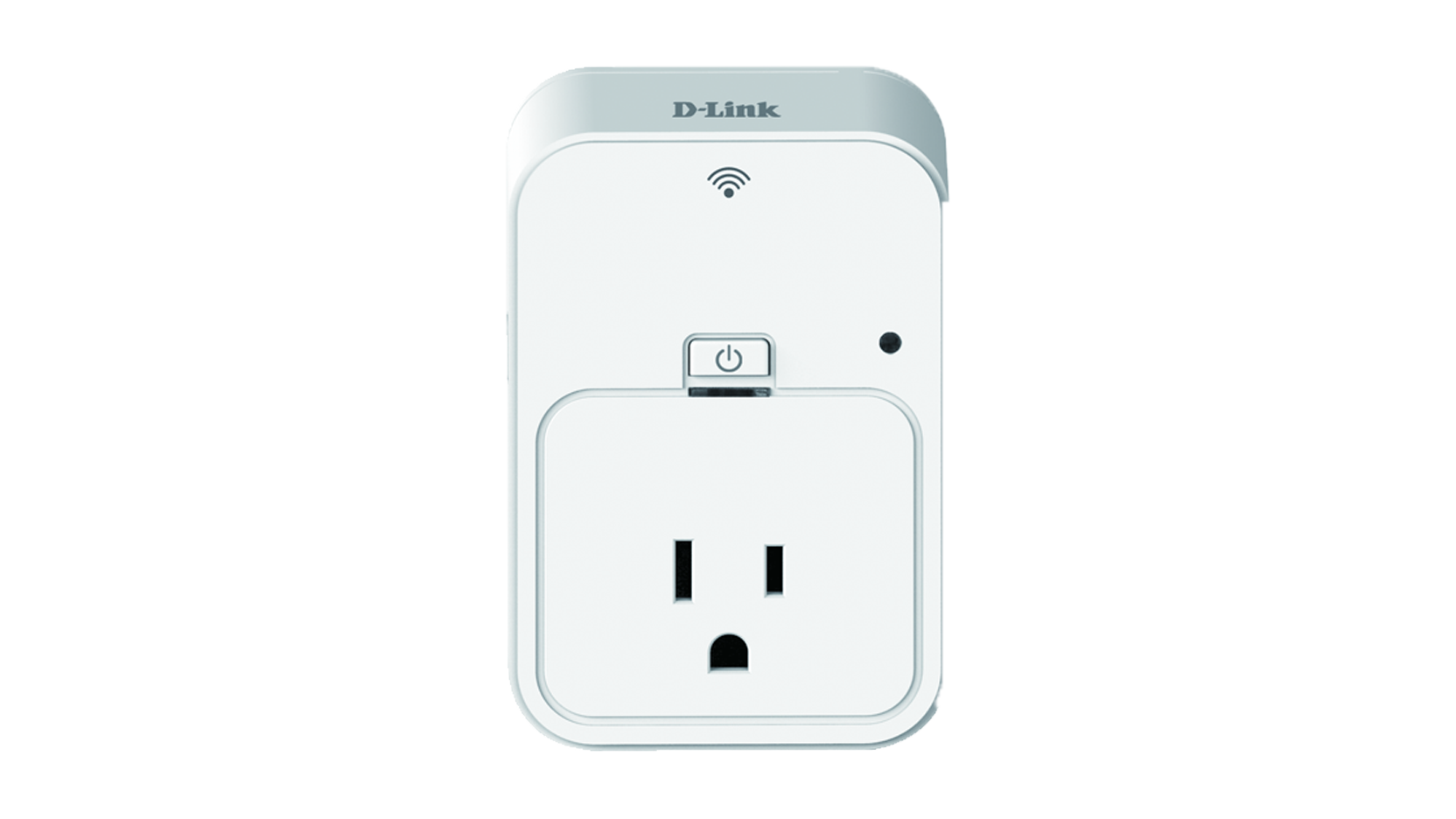
There are all sorts of home electronic devices that you can connect to the internet and control with an app -- including smart lights, intelligent thermostats and smoke detectors. But what if you don’t want to spend a fortune replacing your old devices?
D-Link’s new Wi-Fi Smart Plug (DSP-W215) solves that problem. You plug it into a spare socket in your home, connect any electrical device to it, and then use the free mydlink app for iOS and Android to monitor and control the item. Devices can be turned on and off remotely, you can set power on/off schedules, and monitor your home energy usage. The Wi-Fi Smart Plug also comes with a built-in thermal sensor that will detect when a connected device gets too hot, and automatically turn it off.
"The launch of the Wi-Fi Smart Plug represents a key moment for D-Link as we look to expand our offering of connected home solutions designed for consumers looking for a convenient way to automate their home and control their devices from their smartphones and tablets," says Daniel Kelley, vice president of marketing, D-Link Systems. "The Wi-Fi Smart Plug offers that convenience at an affordable price so customers can automate any range of devices in their home".
It’s very easy to set up -- you press the Wi-Fi Protected Setup (WPS) button on your router and on the Smart Plug, and then download the mydlink Smart Plug mobile app. You can have as many plugs as you need.
D-Link's Wi-Fi Smart Plug is priced at $49.99 and you can find out more about it at www.dlink.com/dsp-w215.
-

Best iOS apps this week
Publié: mai 2, 2014, 2:24pm CEST par Wayne Williams
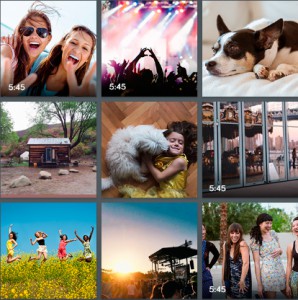 Seventeenth in a series. Microsoft updated its Office for iPad apps this week, adding some welcome new features, including the most requested of them all -- the ability to print documents. This is a feature that should really have been included from the start, but at least it’s in there now.
Seventeenth in a series. Microsoft updated its Office for iPad apps this week, adding some welcome new features, including the most requested of them all -- the ability to print documents. This is a feature that should really have been included from the start, but at least it’s in there now.New releases this week include standalone apps for Google Docs and Sheets, the first in a series of new Star Wars themed story apps from Disney, a clever app that pulls high quality photos straight from your videos, a SpongeBob SquarePants version of Doodle Jump, and one of the best note taking apps I’ve ever used (and no, it’s not Microsoft OneNote -- although the iPhone version of that was also updated this week).
As always, if I miss an app that you think should definitely have been included, let me know in the comments below, or drop me an email.
Here is my selection for this week.
Paid App of the Week
Star Wars Journeys: The Phantom Menace ($6.99)
The last three Star Wars movies were all pretty atrocious, but if you have children who enjoyed them, then this Disney app -- the first in a series covering all of the movies (including the good ones) -- is worth a look.
The app lets you take part in fun pod races across Tatooine, customizing your racer with visual and performance enhancements. It also lets explore the story in 180 degree parallax, and unlock hidden content.
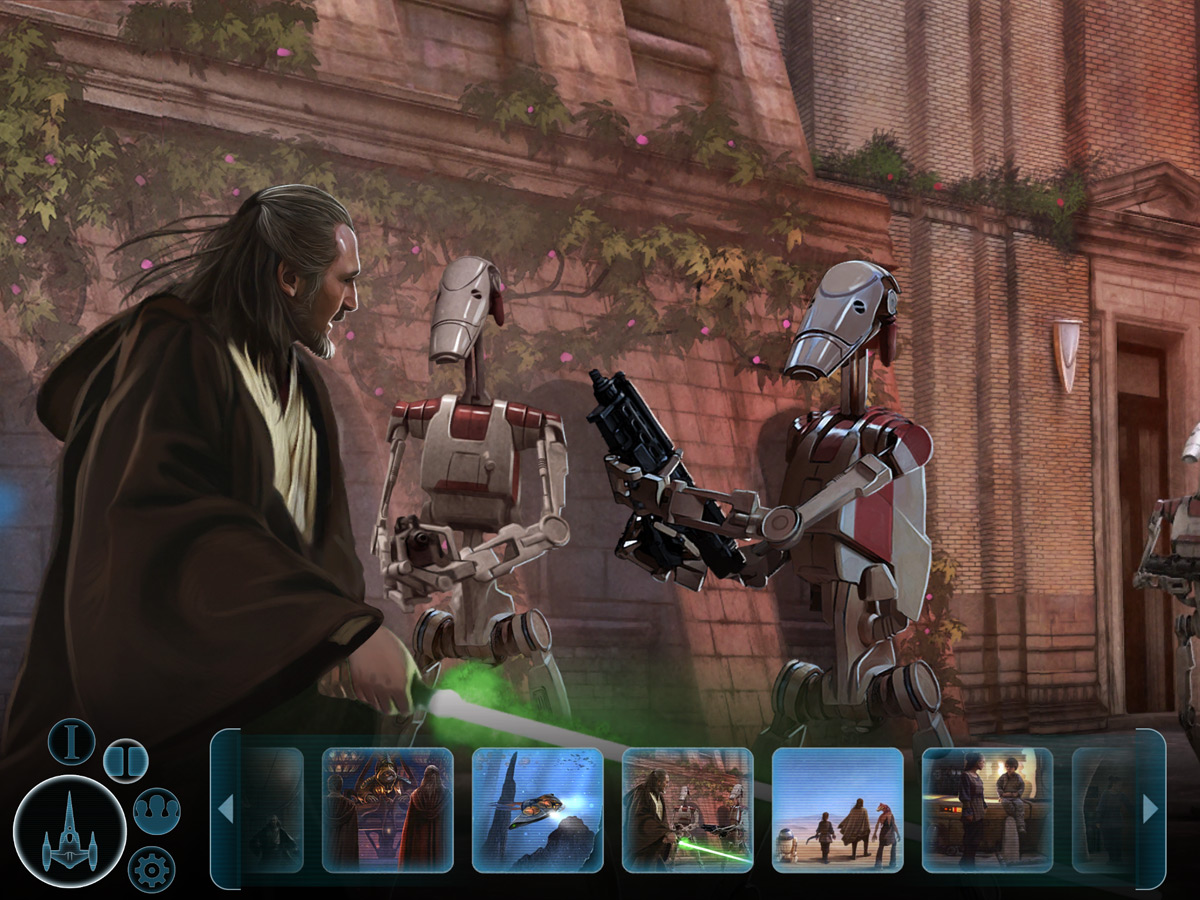
Free App of the Week
Inspired, no doubt, by the success of Microsoft’s Office for iPad apps, Google has released standalone apps for Google Docs and Google Sheets.
The apps provide a front end for Google’s excellent productivity tools and let you create, open and edit documents and spreadsheets. You can use them without an internet connection, and share and collaborate on documents.
If you are online, you don’t have to worry about saving files as everything is saved automatically for you as you type.
There’s no Google Slides app yet, but it’s coming soon.
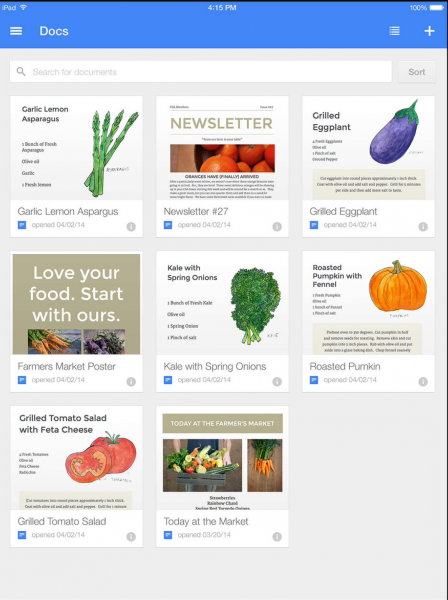
Other Apps
This app pulls great photos straight from your video clips. You can shoot a video using the built-in camera or choose a clip from your device, and Vhoto will automatically extract impressive photos from it. You can save or share the results on social networks like Facebook, Twitter and Instagram, or with the Vhoto community.
It’s a great idea that works really well -- the app only chooses shots that are in focus and well framed, and takes over 20 factors into account including faces, smiles and "user intent" -- and saves you have to choose between shooting a video and taking a photo.

As well as updating its Office for iPad apps, Microsoft also pushed out a new version of OneNote for iPhone. This note taking tool has been given an iOS 7 friendly look, and also gains new features. You can now create new notebooks and sections, and there’s a handy OCR feature called Office Lens that "turns OneNote into a scanner in your pocket".
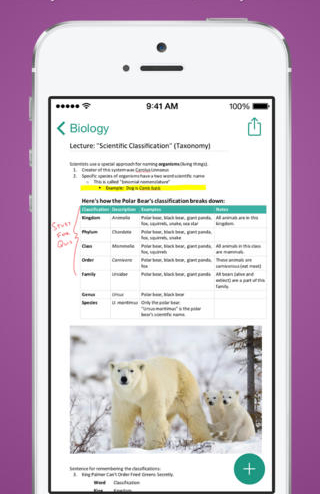
Doodle Jump SpongeBob SquarePants ($3.99)
Offers in-app purchases.
Classic iOS game Doodle Jump has been given a SpongeBob SquarePants themed makeover. In this game you guide Doodle Jump SpongeBob through four undersea worlds featuring characters from the popular Nickelodeon show. There’s also the usual endless mode where the challenge is to see how high you can go.
Fun for fans of Doodle Jump and/or SpongeBob SquarePants.
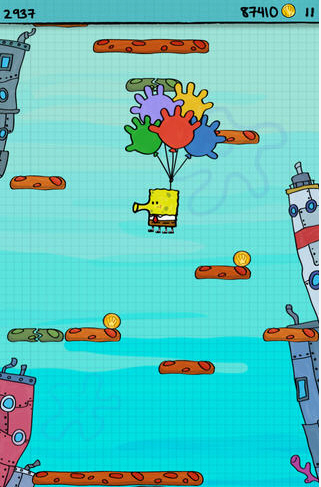
Offers in-app purchases.
Your fellow dwarves are trapped in ancient underground ruins and it’s up to you to rescue them by solving tricky puzzles. You can mine for loot, forge better tools and gear, and blow stuff up with bombs.
It offers the usual selection of largely pointless and over-priced in-app purchases (a handful of gems, a chest of gems).
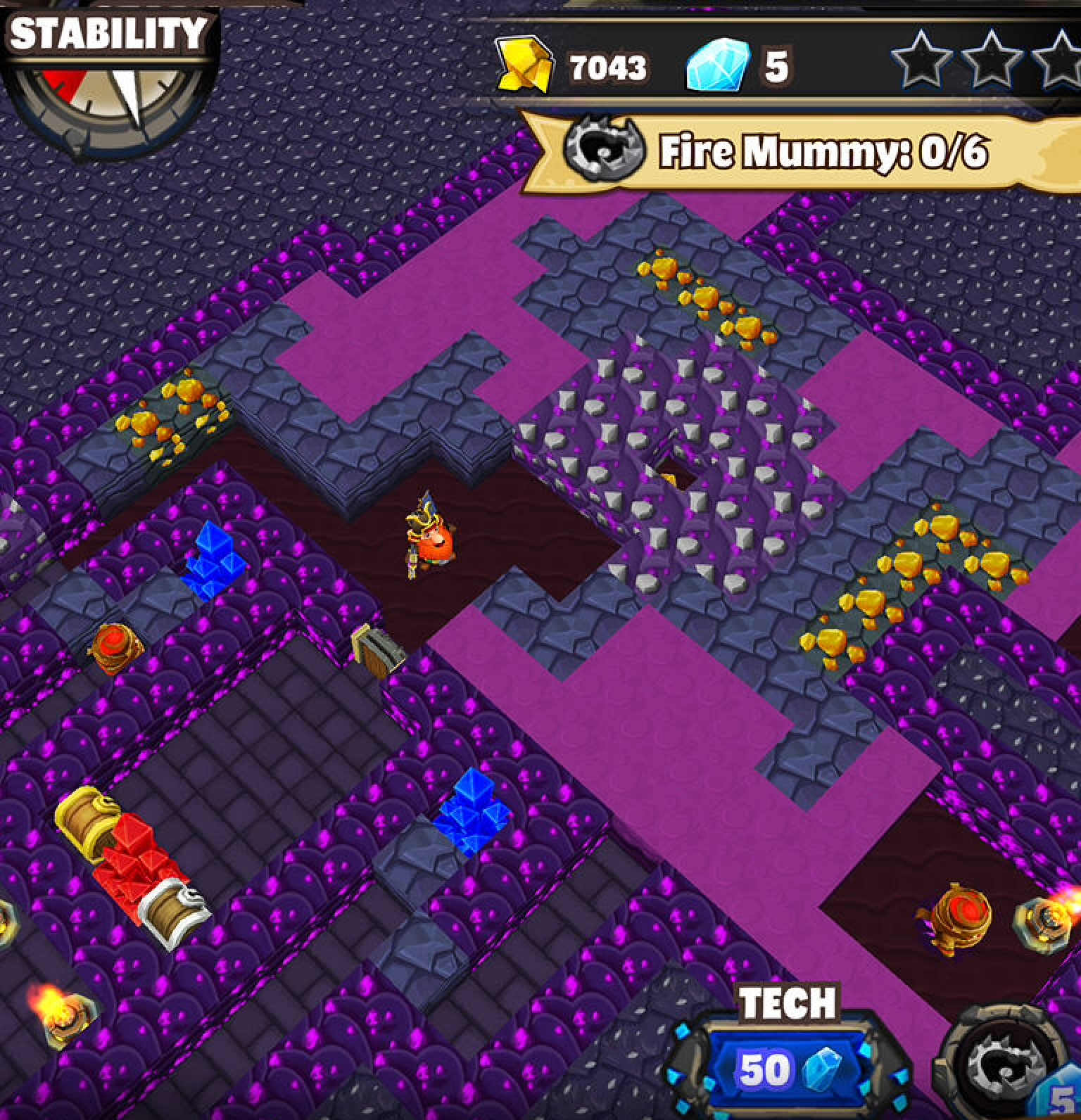
Apple’s App of the Week
This week’s free app from Apple isn’t a game for a change, but rather a note taking tool that lets you jot down ideas, annotate documents, make sketches, keep a journal, record your spoken thoughts and so on. You can import items (including Word documents and Excel spreadsheets via Google Drive) and sort and share your notes.
iCloud support means your notes will be instantly accessible on any iOS device you own, and your work can also be backed up to Dropbox, Box, and Google Drive.
It’s particularly useful for recording meetings or lectures, and writing notes at the same time.

-

10 PRINT "Hello 50 years of BASIC"; 20 GOTO 10
Publié: mai 1, 2014, 2:35pm CEST par Wayne Williams
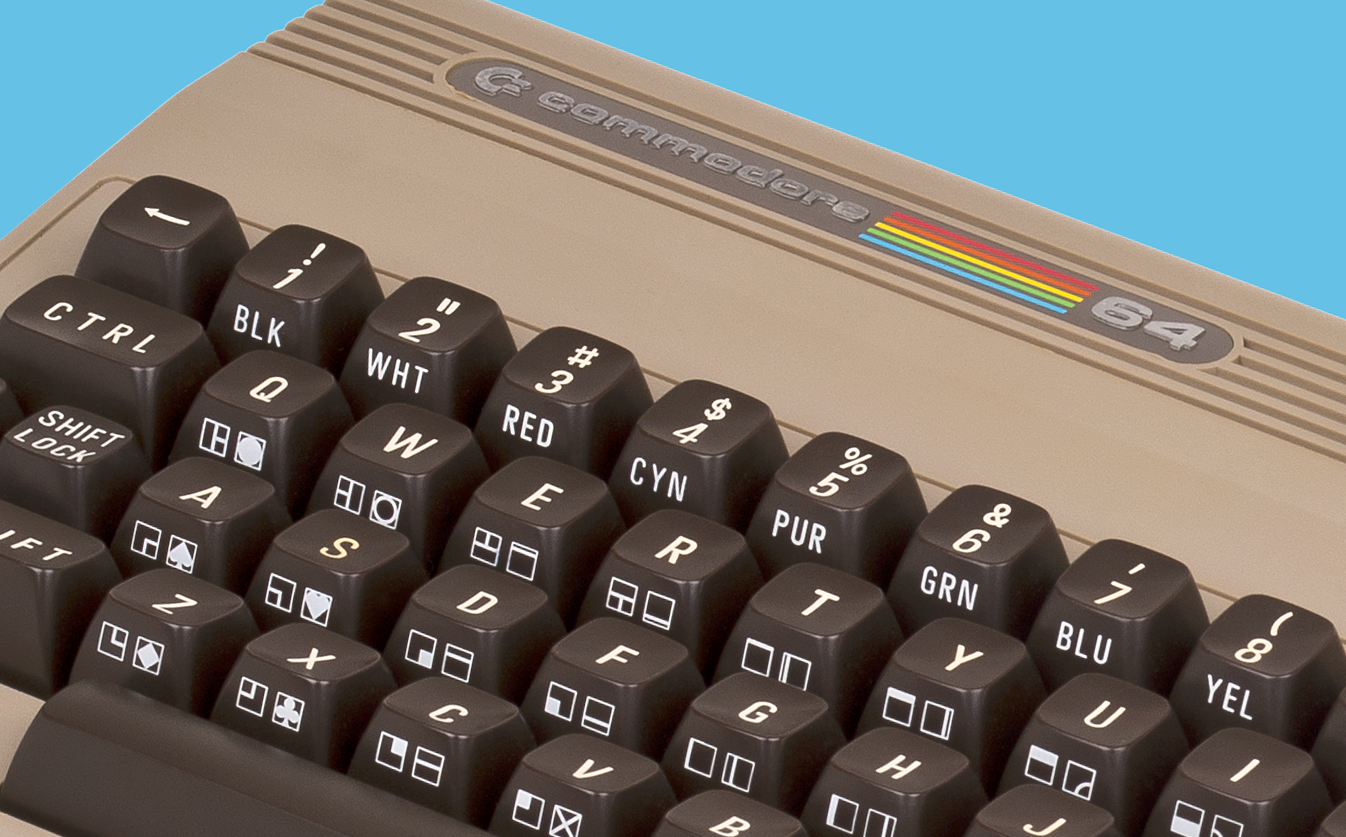
On May 1, 1964, Professor John Kemeny ran the first BASIC (Beginner's All-purpose Symbolic Instruction Code) program from a timesharing terminal at Dartmouth College, in Hanover, New Hampshire. Created by Kemeny and Professor Thomas Kurtz, BASIC was designed to make it easier for students to use computers.
BASIC enjoyed huge popularity in the mid-late 1970s and 1980s, and anyone over a certain age will likely have learned to program on a microcomputer using it. I certainly did. My first computer was a ZX81 from Sinclair Research. It’s a name people in the UK will recognize instantly but will mean nothing to most outside of the British Isles (it was released -- in a slightly modified form -- as the Timex Sinclair 1000 in the United States). To use it, you had to master Sinclair BASIC and that was my first experience with what initially seemed like an alien language.
Programs and games for microcomputers like the ZX81, ZX Spectrum, BBC Micro, Vic 20 and Commodore 64 were loaded from cassette tape (a hit and miss affair) but you could also type in programs printed in computer magazines. These type-in listings were long -- often very, very long -- and it was easy to make mistakes. So when you got to the end of typing everything in, it was common for programs to fail to run. So you then had to laboriously trawl through the listing, comparing it to the on-screen version, looking for the problem. Usually a missing piece of punctuation.
Occasionally the listings themselves were wrong, so the only way to get the program to run would be to identify the flaw in the coding for yourself.
As a result I, and many, many other computer users, learned not only the basics of BASIC, but also developed a solid understanding of how to use the language to create and improve our own programs.
Edsger Dijkstra, a Dutch computer scientist, famously once said "It is practically impossible to teach good programming to students that have had a prior exposure to BASIC: as potential programmers they are mentally mutilated beyond hope of regeneration".
I’m not sure that’s true -- I learned to program COBOL in the early nineties and my tutor said the programs I wrote were "good" -- but as I never pursued a career as a programmer I’ll never know for certain if BASIC mentally mutilated me. Although I will say 33 years after my first exposure to Sinclair BASIC I still clearly remember most of those commands, functions and keywords, so maybe Dijkstra was right!
Either way, without BASIC I’m not sure computers would have found their way into the mainstream so easily, and Microsoft owes its very existence to the language. Bill Gates founded Microsoft with programming partner, Paul Allen, off the back of writing a version of BASIC for the MITS Altair microcomputer.
While the days of programming in BASIC might be long gone, the legacy of that language, and the impact it had on the world we live in today, is undeniable.
10 PRINT "HELLO WORLD!"
20 GOTO 10
RUN
HELLO WORLD!
HELLO WORLD!
HELLO WORLD!
HELLO WORLD!
HELLO WORLD!
HELLO WORLD!
HELLO WORLD!
HELLO WORLD!
HELLO WORLD!
HELLO WORLD!
-

Shocker! Windows 8.1 actually shows strong growth
Publié: mai 1, 2014, 11:15am CEST par Wayne Williams

I say "shocker", but with all the cards stacked in its favor -- XP users forced to look for a new OS, Windows 7 being pretty hard to get hold of, and an update designed to make Windows 8.1 more appealing to keyboard and mouse users -- if Windows 8.1 hadn’t grown market share in April then it would have been pretty much game over for the tiled OS.
Even with all that in its favor, according to NetMarketShare’s monthly Desktop OS sampling, Windows 8.x still had some stiff competition from Windows 7 which also packed on market share, taking the shine off the new OS’s achievements.
As was to be expected Windows XP lost a chunk of users, with its share falling 1.43 percent -- from 27.69 percent in March to 26.26 percent in April. The downwards trend is set to continue, and possibly accelerate, now that Microsoft is no longer providing security updates for the aging OS and flaws like the recent one affecting Internet Explorer make sticking with XP an increasingly risky business.
In the same time period, Windows 8 lost 0.07 percent market share (the first iteration has been steadily declining since the arrival of Windows 8.1), and its replacement gained nearly a whole percentage point (0.97 percent) going from 4.89 percent to 5.86 percent. Combined, Windows 8.x grew by 0.9 percent, its biggest market share gain since December 2013 when, buoyed by holiday shopping, the OS leapt up 1.19 percent.
I expected Windows 7 to do reasonably well and it did, going from 48.77 percent to 49.42 percent, for a gain of 0.65 percent -- roughly two thirds of what Windows 8.x managed.
The tiled OS is now to be found on 12.2 percent of systems. If it keeps up this momentum, in three and a half years it might reach the same market share Windows 7 currently enjoys (although of course in that time span things will have changed massively and who knows what OS we’ll be using then).
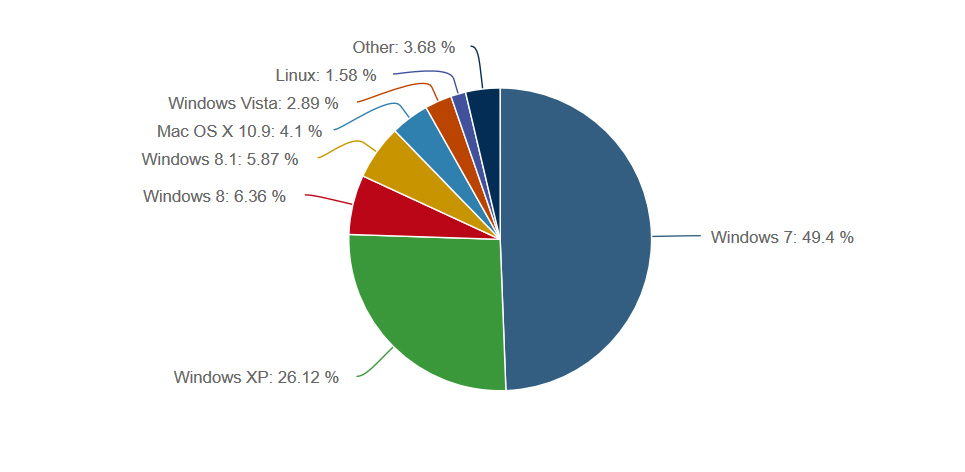
Image Credit: auremar/Shutterstock
-

Searches in Windows 8.1 just got smarter
Publié: avril 30, 2014, 7:08pm CEST par Wayne Williams
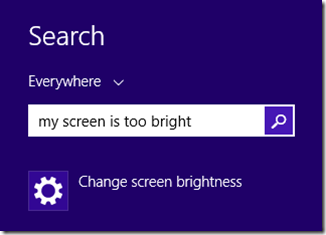 One of the things I like best about Windows 8.1 is the Smart Search feature. Powered by Bing, it lets you look for anything -- a program or app installed on your computer, a file stored on your hard drive or in the cloud, or a website. You open up the Start or Apps screen, and just start typing (or you can use the new Search button which was introduced with Windows 8.1 Update) and then choose the relevant result.
One of the things I like best about Windows 8.1 is the Smart Search feature. Powered by Bing, it lets you look for anything -- a program or app installed on your computer, a file stored on your hard drive or in the cloud, or a website. You open up the Start or Apps screen, and just start typing (or you can use the new Search button which was introduced with Windows 8.1 Update) and then choose the relevant result.I have no complaints about it (although I still use Google for most of my web searches), but today Microsoft is making the Smart Search feature a whole lot more powerful with natural language understanding so you can search for something, even if you’re not sure exactly what it is you’re looking for.
Windows 8.1 Update is a hell of a lot easier to use than Windows 8 was, but working out how to do something, like install a printer, or find and install new apps, may not be immediately obvious to new users. Now though, you don’t have to blunder about trying to work out where you need to go to perform that task -– you just tell Windows what it is you want to do. Type "Install a printer" for example and it will tell you that you need to go to Device Settings. Click the result below and you're all set.
You can search for all sorts of things, and phrase your query in different ways. For example, Windows will understand things like "get apps for Windows", "my screen is too bright", "how do I delete an app".
In addition, Microsoft has updated search to recognize more common spelling mistakes and it will now showcase more relevant apps related to your queries.
"One of the most exciting things about this feature is that it demonstrates how the Bing platform makes our Windows product more useful and helpful without having to update the Windows client software," the Bing Relevance Team states in a new blog post. "Just like our speech work in Xbox or our constantly improving Cortana functionality, the power of Bing as a platform means products you use every day simply get more personal, helpful and intelligent every day".
Smart Search will likely still draw a blank if you ask it where the Start menu is though...
-

A potential game changer: Xbox One set to launch in China
Publié: avril 30, 2014, 9:22am CEST par Wayne Williams

Since launch, Sony’s PlayStation 4 has easily outsold Microsoft’s rival console, and even beat Sony’s own sales projections. That the Japanese console is available in more territories than its American rival is one important part of the reason for this success.
Now Microsoft is hoping to fight back by bringing the Xbox One to China in September. The all-in-one games and entertainment system will be the first of its kind to launch in the country, and the first foreign games console since China lifted a 14-year old ban on such devices in January.
The launch is the result of a partnership between Microsoft BesTV New Media Co., a subsidiary of Shanghai Media Group.
"Launching Xbox One in China is a significant milestone for us and for the industry, and it’s a step forward in our vision to deliver the best games and entertainment experiences to more fans around the world", says Yusuf Mehdi, corporate vice president, marketing and strategy, Devices and Studios, Microsoft. "BesTV has a rich history of delivering innovative entertainment content. It is the ideal partner with which to bring the Xbox business to China".
"The launch of Xbox One here will bring distinction as the first-ever game console with OTT functionality in China", said Dazhong Zhang, senior vice president, Shanghai Media Group, and chairman, E-Home Entertainment Development Company Ltd. "The launch of Xbox is a milestone for our company in the family entertainment market and will create profit growth opportunities. Furthermore, we will continue our investment and support into research and development for gaming content together with Microsoft. Via our cooperation with the world’s leading team, we will continue to develop video games fused with Chinese culture and provide further distribution support for locally produced Chinese video game content to the world".
China is a potentially huge market for the Xbox One with an estimated half a billion people playing games. As Microsoft points out that’s "roughly more than a third of the country’s population and more than the entire population of North America".
How many of those gamers will want to buy an Xbox One remains to be seen however, as most games there are currently played on PCs, smartphones and tablets, and the idea of a dedicated gaming console is a rather alien one for Chinese consumers.
Also, despite the long ban, games consoles have been available in China on the black market, so many gamers who want to own such a device (and don’t mind breaking the law) may already have one.
Still, it’s an important opportunity for the Xbox One, and Microsoft will want to capitalize on its head start. It likely won’t be long before the PS4 follows suit.
Image Credit: Wayne Williams
-

Amazon launches new Wearable Technology store
Publié: avril 29, 2014, 3:46pm CEST par Wayne Williams

Wearable technology has yet to really make an impact, but its time is coming. There are more and more products being released by many of the world's top tech firms, and shows focusing on wearables are popping up across the globe.
Amazon today joins in the wearables craze by launching a one-stop shop where customers can find and buy the latest in wearable technology, including activity trackers, smart watches, and wearable cameras. There are products on offer from the likes of Samsung, Jawbone, GoPro, Basis, and Misfit.
"Wearable technology is an exciting category with rapid innovation and our customers are increasingly coming to Amazon to shop and learn about these devices," says John Nemeth, Director of Wireless and Mobile Electronics at Amazon. "We’re thrilled to bring our customers a store with the largest selection and great prices that helps eliminate the guesswork when deciding which wearable devices best fit their needs -- whether that is tracking activity, staying connected through smart watches or capturing their next adventure with wearable cameras".
The new store offers a Learning Center with product videos and buying guides to help would-be purchasers better understand the benefits of the items on offer. Customers can read about device compatibility, and view product comparisons and use-case suggestions. They’ll also be able to catch up on the latest wearable tech news and reviews in the Editor’s Corner.
The Wearable Technology store is open for business now at www.Amazon.com/wearabletechnology.
-

Best iOS apps this week
Publié: avril 25, 2014, 2:26pm CEST par Wayne Williams
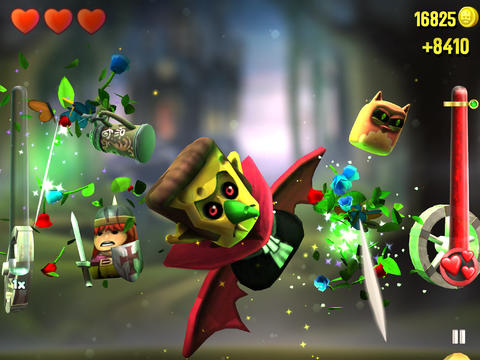 Sixteenth in a series. Apple reported its second quarter results this week, and they beat analyst expectations with the iPhone doing especially well. Apple shipped 4.14 million Macs, 16.35 million iPads and 43.72 million iPhones during the quarter. iPhone sales grew by 16.8 percent while iPad sales declined by 15.9 percent. Although the iPad’s slump looks very bad in the quarter you have to remember Apple struggled to meet holiday demand the previous year, leading to an inflated number of shipments in the March 2013 quarter.
Sixteenth in a series. Apple reported its second quarter results this week, and they beat analyst expectations with the iPhone doing especially well. Apple shipped 4.14 million Macs, 16.35 million iPads and 43.72 million iPhones during the quarter. iPhone sales grew by 16.8 percent while iPad sales declined by 15.9 percent. Although the iPad’s slump looks very bad in the quarter you have to remember Apple struggled to meet holiday demand the previous year, leading to an inflated number of shipments in the March 2013 quarter.New and updated apps worthy of your attention this week include a Sonic racing game, a "ridiculous animal simulator", an activity tracker, a travel app for iPad, a world-time clock, and an alternative to Fruit Ninja with better graphics.
As always, if I miss an app that you think should definitely have been included, let me know in the comments below, or drop me an email.
Here is my selection for this week.
Paid App of the Week
Leo’s Fortune ($4.99)
I like unusual looking games, and Leo's Fortune, with its hand crafted levels, certainly fits the bill. The aim of this platform adventure is to hunt down the mysterious thief who stole Leo’s gold. Leo himself is a cute green fluff ball with an impressive mustache.
There are 24 levels to play through, vicious traps to avoid and physics based puzzles to crack.
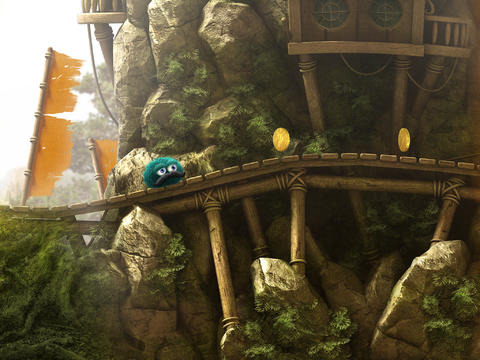
Free App of the Week
Travel apps are increasingly replacing travel books, and My Destination is a promising new addition for the iPad. The app offers tips and insights from over 200 local experts, a trip planner and interactive maps (which all work offline).
The app does offer in-app purchases -- you can buy guides for the Bahamas, Dominican Republic, Prague, Athens, Barcelona, London, Bangkok, Toronto, and others -- but while they will eventually set you back $4.99 for each destination, they’re currently all available for free until the end of April.
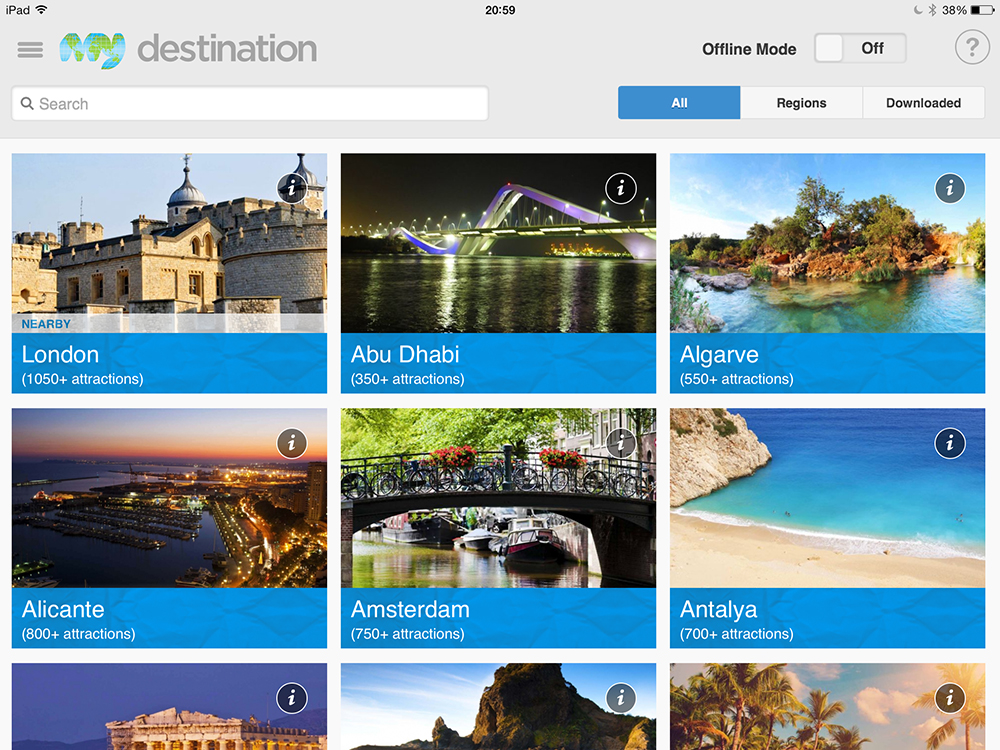
Other Apps
FitnessKeeper’s app for iPhone 5s provides guidance and motivation to help you be more active every day. The "life tracking" app uses the 5s’s built-in activity tracker to monitor your steps and movement so you can see just how active you’re being. It displays your last seven days’ worth of activity, highlights notable activities, and keeps track of your best days.
I currently use Fitbit on my iPhone 5s but this looks like an interesting alternative.
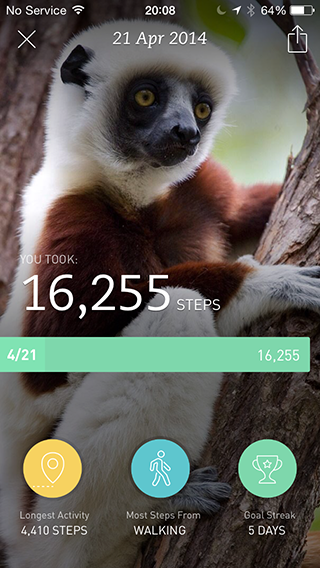
Goat Rampage ($0.99)
This is my colleague Brian Fagioli’s current favorite game and he’s been insisting I play it, and feature it here. It’s described as "the most ridiculous animal simulator available for iOS" and the aim is to smash as many objects as possible using your goat. It sounds silly, and of course it is -- it’s very, very silly.
But it’s entertaining, and worth grabbing while it’s on sale (70 percent off at the moment).

Sonic & All-Stars Racing Transformed
Offers in-app purchases.
Sega’s Mario Kart-style racer is a great game, and it’s now available for free. Naturally the switch to Freemium (the game originally cost $4.99) means there are a bunch of in-app purchases being offered, but you don’t need to spend any money to enjoy the game.

Need to know the exact time for any time zone? Time.is can tell you. It offers synchronization to atomic clock time with an accuracy down to ±5 milliseconds, and automatically takes into account things like daylight saving. It will also show sunrise, sunset and day length, and offers a calendar, and a dark/light mode.
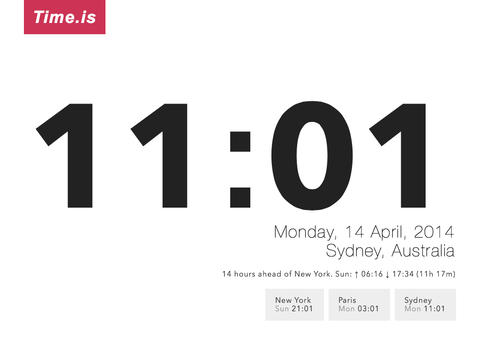
Apple’s App of the Week
This week’s free app from Apple is described as the "next generation slicing game". As you’d expect it plays like Fruit Ninja, but offers excellent super smooth graphics and addictive gameplay. I haven’t had a chance to play it much yet, but so far I think it’s the better game.
There are over 200 enemies, 12 different worlds, and a selection of powers -- you can freeze time, chain explosives, and summon meteor showers.
It’s great fun, and well worth the download.
-

Android Bitcoin mining malware found on Google Play
Publié: avril 25, 2014, 9:37am CEST par Wayne Williams
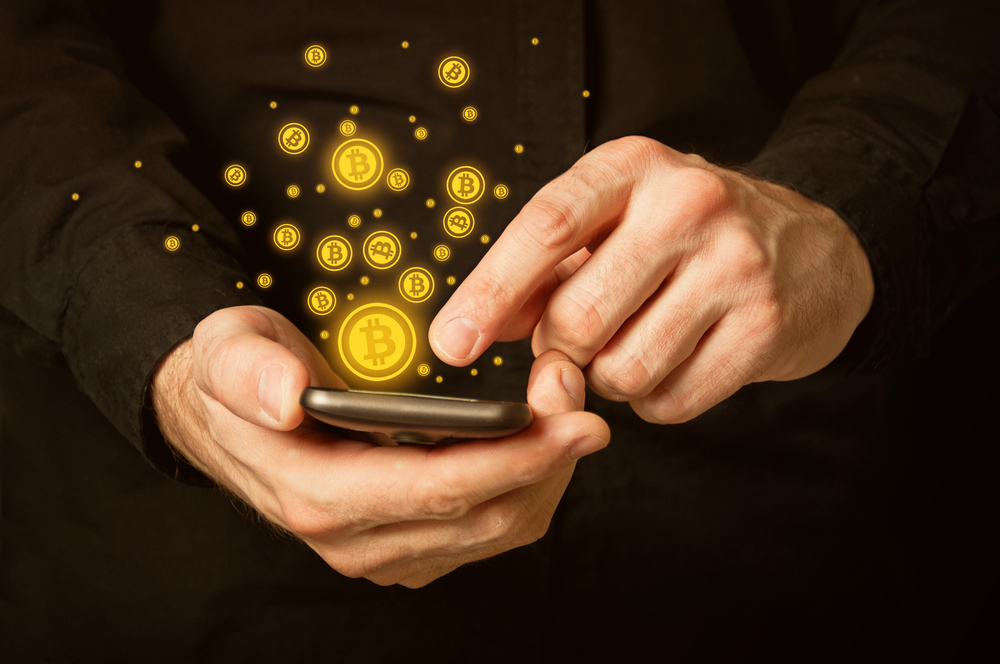
Using a mobile device to mine for Bitcoin is hugely impractical. A recent experiment involving 600 quadcore servers managed to create just 0.4 Bitcoins over the course of a year, which makes mining with a mobile a lot like digging in a mostly-spent goldmine with a spoon.
But, in theory, if you could harness the power of enough mobile devices -- hundreds of thousands, or maybe millions -- you might be able to start generating Bitcoins. BadLepricon, a new piece of malware, takes that view and uses your phone’s processing power to mine for new coins. It’s disguised as a harmless wallpaper app, and several instances of it have already been found on Google Play.
Security firm Lookout says the wallpaper apps all did as was advertised and delivered live wallpaper, but also mined for Bitcoin when the device wasn’t being used. Cleverly, rather than just mining non-stop, the malware checks to make sure the battery life is at least 50 percent, the display is turned off, and the device has connectivity, before going to work. This way mobile owners are less likely to suspect something is up, allowing the malware to continue to run unchecked.
BadLepricon makes use of a Stratum mining proxy, enabling the malware’s author to change mining pools or connections to Bitcoin wallets with ease, and providing the creator with a degree of anonymity.
Lookout found five instances of BadLepricon on Google Play, and they were all removed promptly once Google had been alerted. The security firm says the "apps had between 100-500 installs each at the time of removal".
Despite these occasional scares, Google Play remains relatively malware free. Last year F-Secure found that only 0.1 percent of all the mobile malware on Android came from Google’s official app store.
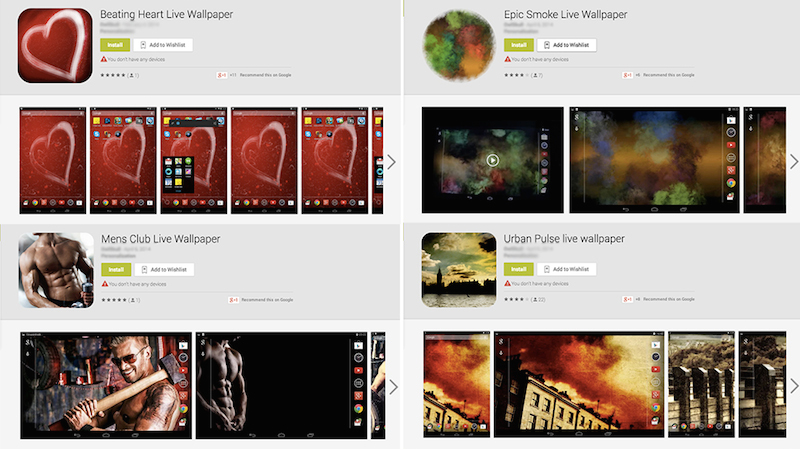
Photo Credit: igor.stevanovic/Shutterstock
-

Improve your fitness with RockMyRun
Publié: avril 23, 2014, 12:45pm CEST par Wayne Williams
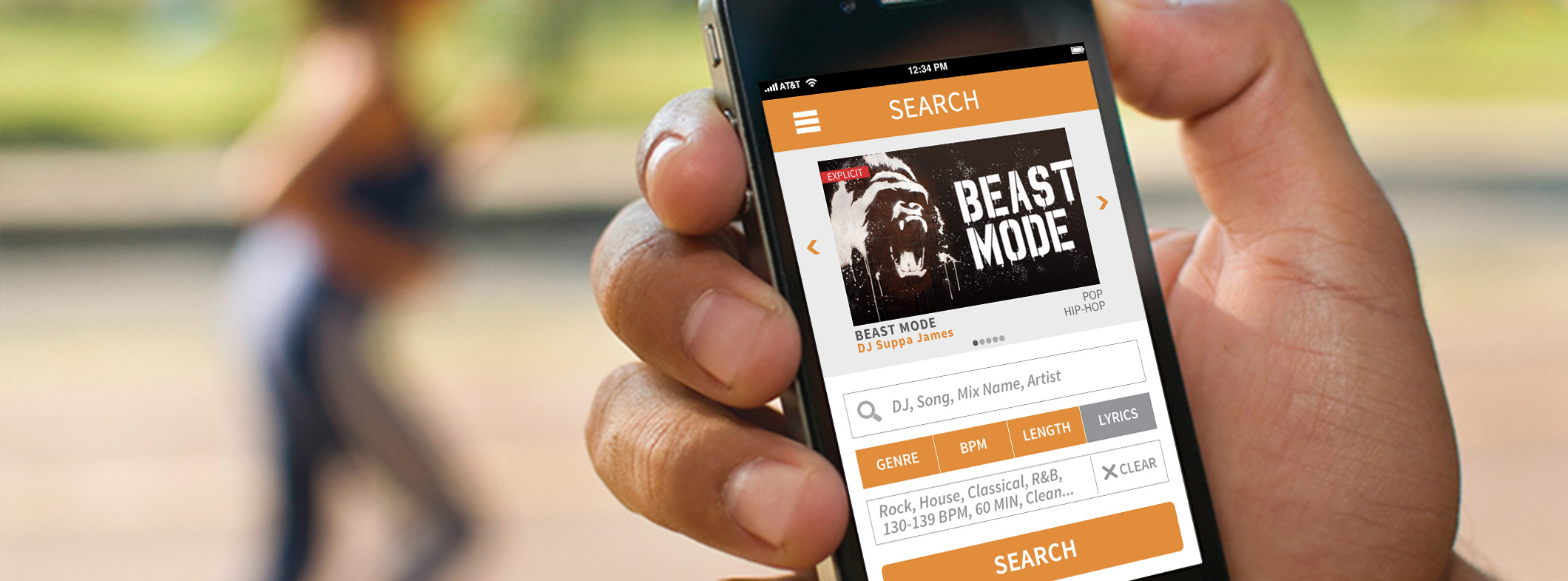
I enjoy running, but require motivation to get started and keep going. Thankfully there are plenty of apps which can help here. I’m a big fan of Zombies, Run! and the similar BattleSuit Runner, both of which offer episodic stories that unfold in between tracks from your playlist as you run.
Occasionally though I just like to put on some running music, and for that I have a new favorite app -- RockMyRun. This is essentially a large collection of mixes from various DJs, covering a wide range of genres -- 80s, 90s, Rock, House, Pop, Hip-Hop, Dubstep, Christian Rock, Oldies, and so on -- that have been designed specifically for listening to when running (the last 15 minutes are higher energy, to encourage you to keep going). Mixes can be streamed on 3G/4G, or downloaded to your device via Wi-Fi.
You can find new mixes by browsing all of the available choices, or searching by DJ, song, mix name, or artist. You can also filter results by artist, BPM, length, or lyrics (clean or explicit).
I’ve listened to loads of the mixes, and so far they’re all excellent. Each mix is made up of well-known, and not quite so well-known tracks, and you can browse the song listing to see if it’s something you think will appeal. "To The Max", for example, includes songs from Siouxsie and the Banshees, Ultravox, The Cure, Hall & Oates, The Stranglers, Morrissey, Madness, David Bowie, and the Ramones. "Best of 2013" features tracks from Daft Punk, Katy Perry, Calvin Harris, Robin Thicke, and Icona Pop.
If you use the free ad-supported service you’re limited to mixes that are maximum of 45 minutes in length, while Premium subscribers can enjoy ones with a duration of up to two hours. There are other benefits to becoming a premium subscriber -- you don’t see ads, there are less annoying pop-ups, and you can adjust the BPM of mixes. So if you find a mix you love, but it’s slower than the speed you want to run at, you can crank it up a notch.
Upgrading to premium costs $4.99/month, $12.99/quarter or $35.99/year and when your subscription expires you lose access to your longer mixes. You can however, download up to three mixes a month in MP3 format from the website, so you’ll be able to keep listening to some of your favorites, which is a nice touch.
As with any mix, there will be sections when a song or two isn’t to your liking, but RockMyRun lets you skip straight to the next track in any downloaded mix.
The app doesn’t include any tracking/monitoring functions, but you can use it in conjunction with something like Fitbit, RunKeeper, or MapMyRun.
RockMyRun is available for iOS and Android.
-

BetaNews Exclusive: Try AirCover Security Premium for Android FREE for 3 months
Publié: avril 22, 2014, 2:00pm CEST par Wayne Williams
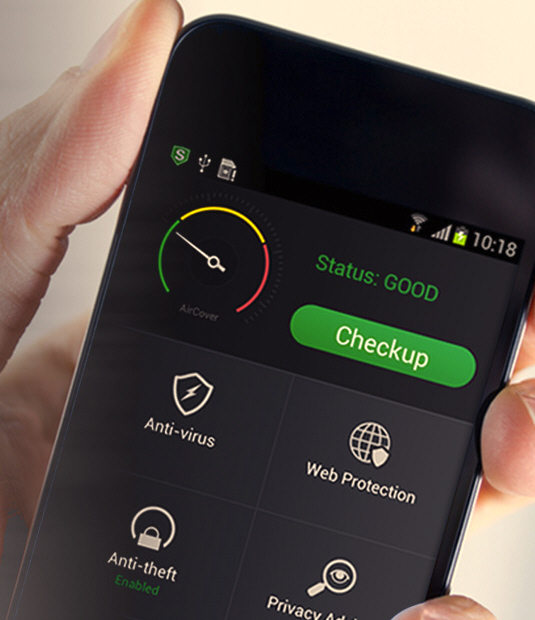 AirCover Security can secure your Android device against malware and theft, help boost your privacy, optimize your system, block unwanted calls and SMS messages, and safeguard you on the web. The comprehensive app is free, with the option to unlock further premium features.
AirCover Security can secure your Android device against malware and theft, help boost your privacy, optimize your system, block unwanted calls and SMS messages, and safeguard you on the web. The comprehensive app is free, with the option to unlock further premium features.Upgrading to premium adds automatic virus database updates, advanced anti-theft and anti-surveillance features, and privacy advisor with vulnerability scan. The premium version usually retails for $2.99 a month, (or $19.99 a year) but BetaNews readers can try it absolutely free for three months -- saving $8.97. The only snag is that you have just 24 hours to take advantage of our exclusive offer, so act fast!
AirCover Security offers the following features:
- Check Up -- Protects your device from viruses, malware, spyware, and suspicious apps.
- Anti-Virus -- Real-time protection and a choice of on-demand scans.
- Web Protection -- Account protection safeguards you from phishing, fraud, harmful sites and malware, while financial protection provides security when using payment or banking apps. Also offers a malicious URL blocker.
- Anti-Theft -- Can sound an alarm to make a device easier to find, locates a missing phone over the web, and lets you back up contacts. The app can also take photos of potential intruders, wipe your data and monitor your SIM card.
- Privacy Advisor -- Lists apps that can spy on you, and protects calls from being monitored and eavesdropped on.
- Performance -- Optimizes your device.
- Call & SMS Blocker -- Blocks calls and text messages with just a few clicks.
The latest version improves the backup speed, can clean logs automatically, and lets you get 7 days free premium use by inviting friends to try it out.
It’s a great app, that I’ve used on my Nexus 7 (and Samsung Galaxy S III before that) since I first reviewed it, and I’d definitely recommend you try it out. With our exclusive offer there’s nothing to lose.
To get your free three months of AirCover Security Premium just click here. Enter your details, and when you use the same email address to create an account in AirCover Security all of the premium features will be automatically enabled.
-

Best iOS apps this week
Publié: avril 18, 2014, 9:41am CEST par Wayne Williams
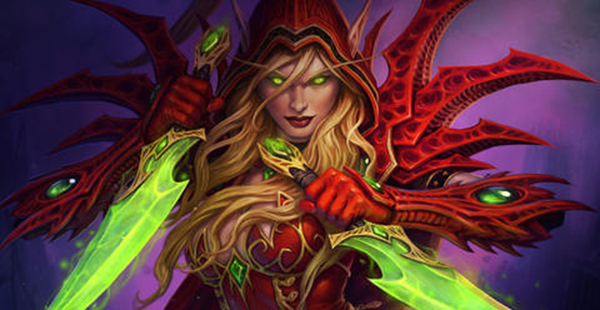
Fifteenth in a series. Featured apps this week include the latest installment in the excellent post-apocalyptic fitness app Zombies, Run!, a Heroes of Warcraft card game, a full iPhone video editor from Pinnacle, a piano tutor, a new MediaFire app for iPad, and a DJ mixing tool for iTunes and Spotify.
As always, if I miss an app that you think should definitely have been included, let me know in the comments below, or drop me an email.
Here is my selection for this week.
Paid App of the Week
Zombies, Run! 3 ($3.99)
Offers in-app purchases.
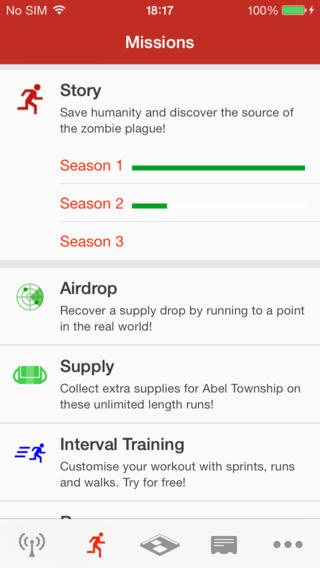
I’ve been a huge fan of the immersive fitness app since it first launched. Season 3 (which is available as a free upgrade for existing users) offers a redesigned interface and more detailed statistics. The Codex -- an in-game encyclopedia about the items you pick up on your runs -- also makes a return after going missing a while back.
In addition to the new 60+ mission pack (which is currently priced at $5.99) the update adds a new advanced interval training mode. This allows players to set their own running intervals and takes place during the first season of the Zombies, Run! story. This mode costs an extra $2.99, but you can try it for free.
With all the in-app mission pack purchases Zombies, Run! is pretty pricey, but you do get over 45 hours of fully-scripted and fully-cast drama for your money.
Free App of the Week
Hearthstone: Heroes of Warcraft
Offers in-app purchases.
From Blizzard Entertainment, this is a "fast-paced, whimsical card game of cunning strategy". It’s easy enough to play, and tutorial missions help to get you started. You collect cards as you progress, and can hone your skills in practice missions against characters from the Warcraft universe.
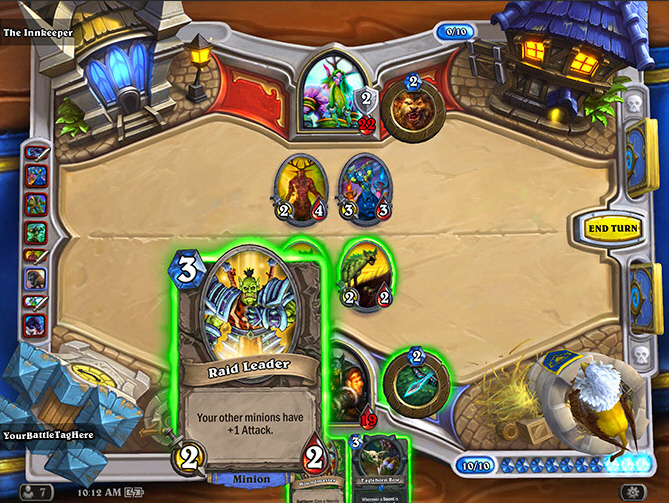
Other Apps
Pinnacle Studio for iPhone ($9.99)
I take a lot of videos on my iPhone 5s, but rarely bother to edit them. Pinnacle’s new app might just change that. It offers a full Timeline so users can edit video, audio and photos, add transitions, speed and montage effects, create custom titles and build soundtracks.
It’s based on the iPad version of Pinnacle Studio, which is great and has also just received an update.
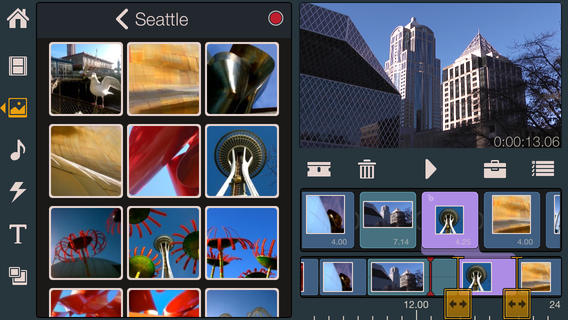
The MediaFire app is now available for iPad as well as iPhone and allows users to quickly access, stream, and share photos, movies, music, and files held on the popular storage service. It offers enhanced video streaming performance, as well as a retina-optimized user interface.
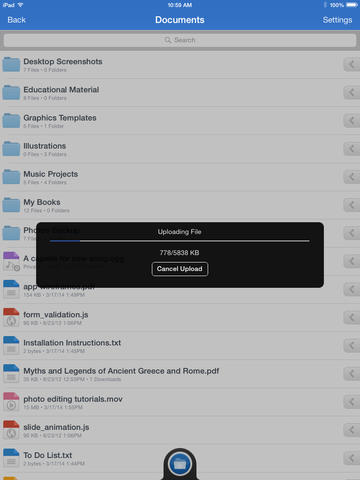
Offers in-app purchases.
Piano Maestro (formerly Piano Mania) makes learning to play the piano fun and easy. As well as a name change the app has been given a new look and additional features including Method books, and a homework assignment function.
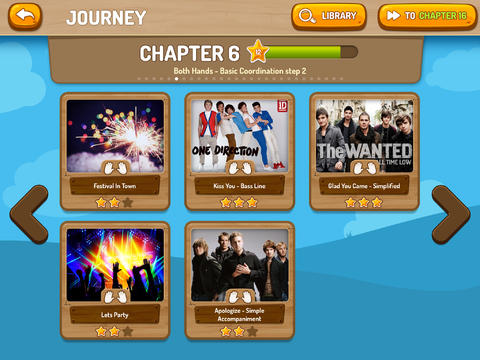
Offers in-app purchases.
A DJ app for iTunes and Spotify, Pacemaker lets you mix your favorite songs together. You can use your own tracks, or purchase new ones, and the Sync feature keeps the tracks you’re mixing in sync. You can perform some scratching, add loops, apply crossfades, blend elements, and then save and share the finished results via Facebook and Twitter.
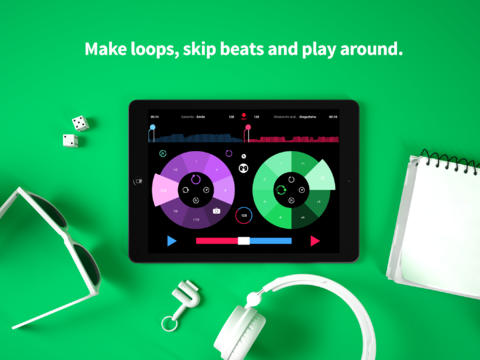
Apple’s App of the Week
Offers in-app purchases.
Apple’s free app this week is a graphically rich action adventure that I’ve had the pleasure to play in the past.
You play as Horn, a blacksmith’s apprentice, and your task is to free your fellow villagers who have been transformed into monsters by a curse. There are three lands to play through, and fun combat that‘s similar to the battles in Infinity Blade.
If you’ve not played it before, it’s definitely worth a download.
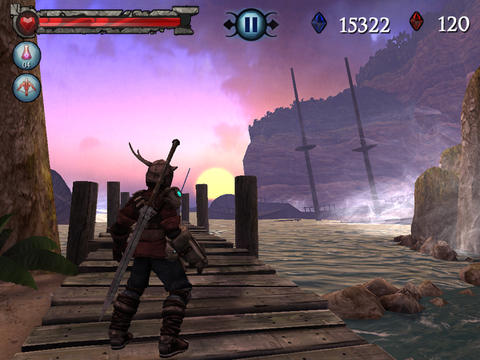
-

BetaNews Exclusive: Try Bitdefender Antivirus for Mac FREE for 6 months
Publié: avril 17, 2014, 11:00am CEST par Wayne Williams
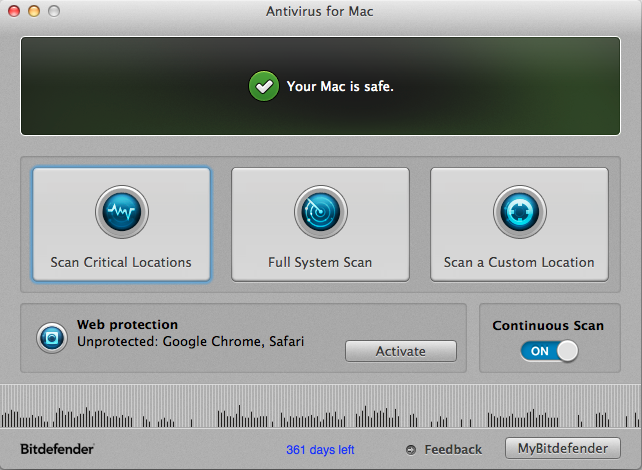
Last week Derrick Wlodarz debunked the Apple myth, explaining why security through obscurity isn't security. Macs are not virus-proof -- Apple-targeted malware is proliferating and users need to become aware of the risks and protect their devices just like any other regular Internet user, without false security expectations.
Here’s where Bitdefender steps in. The new Bitdefender Antivirus for Mac is specifically designed for Apple users, and Bitdefender is offering BetaNews readers a free six month license. This is the full version that usually retails for $49.95, not some featured limited "special" edition. However, you’ll have to act quick as the offer is only available for 48 hours.
Bitdefender Antivirus for Mac offers:
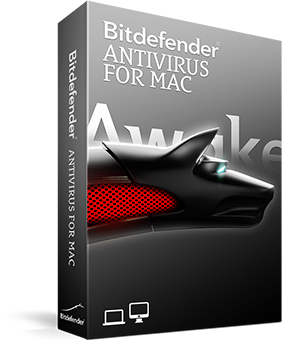 Continuous protection. Enjoy a seamless experience. Bitdefender’s lightweight, non-intrusive scanning technology offers malware detection for both Mac and Windows threats -- without the risk of slowdowns.
Continuous protection. Enjoy a seamless experience. Bitdefender’s lightweight, non-intrusive scanning technology offers malware detection for both Mac and Windows threats -- without the risk of slowdowns.- Online safety. Phishing scams don’t discriminate users by OS. Dodge fraud attempts while browsing, as Bitdefender warns you of any malicious websites. Mac users can activate TrafficLight browser add-ons to stay protected from any phishing or fraud attempts.
- Auto-updates. Continue your work without interruptions, as Bitdefender silently updates its malware definitions without prompting you.
- On demand scan. You can scan files manually, including USB devices, to protect yourself and others from malware infections.
To get your free six month version of Bitdefender Antivirus for Mac just click here. (Please note, promotional licenses need to be activated within 30 days.)
-

How to slipstream Windows 8.1 Update into a custom installation ISO
Publié: avril 16, 2014, 2:12pm CEST par Wayne Williams
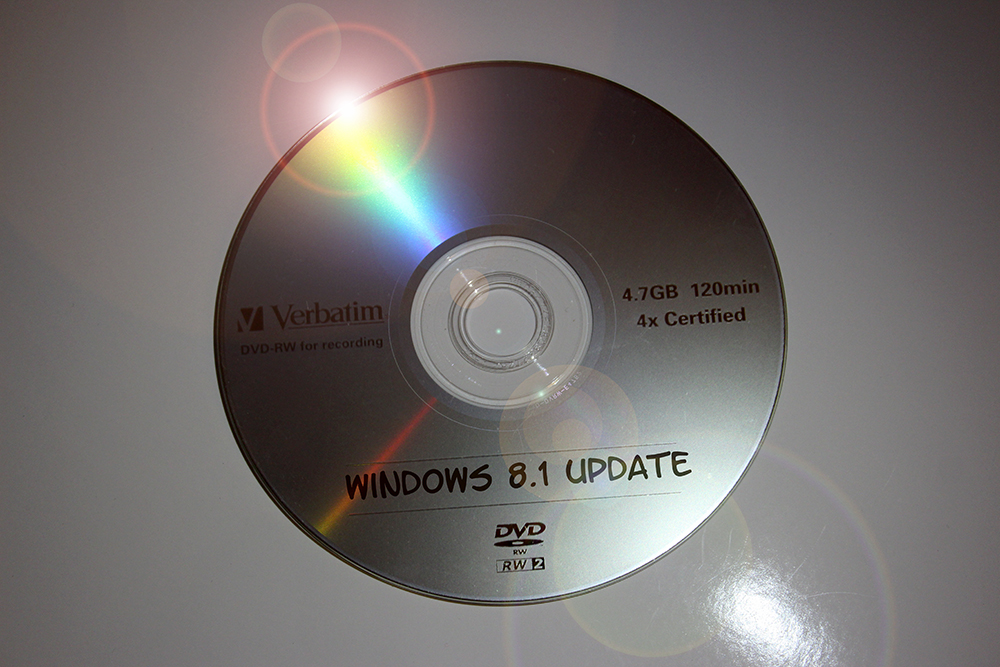
Microsoft’s tiled operating system is best viewed as a work in progress. The tech giant made major changes from Windows 8 to 8.1, and has just released the mandatory Update, which adds tweaks and new features aimed primarily at keyboard and mouse users.
The downside of these changes is that if you ever have to reinstall Windows you’ll need to update your computer with the Update and other security patches and so on afterwards. Fortunately, you can create a new, more up to date installer by slipstreaming (integrating) the Update with the original disc files.
To slipstream the Update into Microsoft’s new OS, you’ll need a Windows 8.1 ISO file and a copy of WinReducer 8.1. You’ll also need to install some additional tools. These are:
- 7-Zip
- ImageX and Oscdimg
- Resource Hacker
- SetACL (you need the EXE version)
Copy the executables from the programs you downloaded (7z.dll, 7z.exe, imagex.exe, oscdimg.exe, ResHacker.exe, and SetACL.exe) to the WinReducer81\HOME\SOFTWARE folder. It’s a lot of messing around to be honest, but you only have to do it once.
WinReducer will automatically detect when you have the required tools installed. There will be green "on" lights next to each item in the Software Detection section.

Close the configuration window and the main WinReducer window will open. Click the Start button, then click on ISO and navigate to your downloaded Windows 8.1 ISO and wait for the extraction to complete.
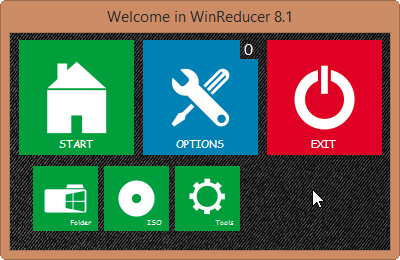
During this stage you may see a message stating "You are trying to use an unsupported Windows Upgrade DVD!". If you do, then you won’t be able to progress with that ISO. You’ll either need to use a different ISO, or use the installation files from a Windows 8.1 disc (in WinReducer go to Start, Folder, navigate to the folder that contains the extracted files, and then click Mount). Unfortunately the official ISO from Microsoft, which you can download by following the instructions here, won’t work.
Assuming the ISO you’re using processed fine, click Mount. With that done, click on System and select the WinReducer Updates Tool. Choose your version of Windows (x86 or x64), then click on the Update button. Check the box next to "Updates (Update 1) (6)" then click the Download button.

When the updates have been downloaded, exit the tool, then fill in the path to the updates in the box: WinReducer81\WORK\INTEGRATE\UPDATES\x86 (32-bit Windows) or WinReducer81\WORK\INTEGRATE\UPDATES\x64 (64-bit Windows).
Click Finish, then click Apply and wait. Finally, choose to save the file as an ISO and click Save. You can write the finished image to disc, or turn it into a bootable USB flash drive by following Mihaita’s instructions here.
-

How to download and install the Windows 8.1 ISO -- using a Windows 8 or 8.1 key
Publié: avril 15, 2014, 10:56pm CEST par Wayne Williams
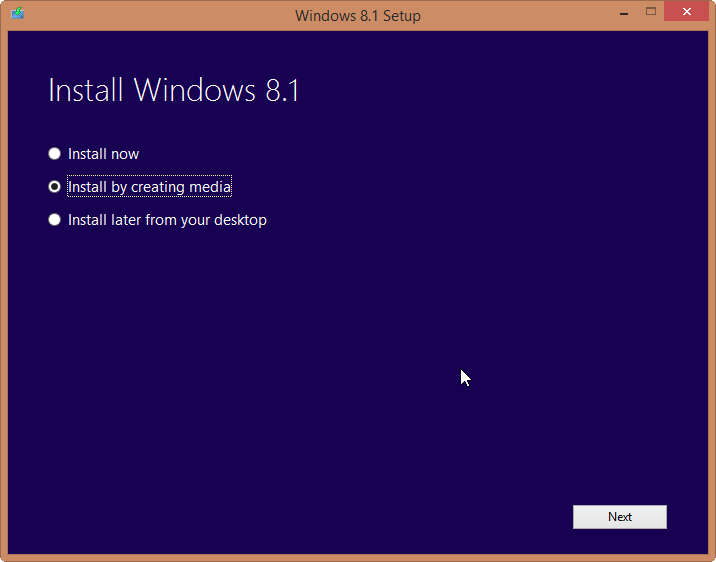
I’ve been asked by a couple of people in the past week how to download the Windows 8.1 ISO file from Microsoft. Downloading the ISO file necessary to install the OS at a later date, or on another system, is very straightforward, although it’s far from obvious. I covered this six months ago, but things have changed and less trickery is involved now.
At the moment the provided ISO file doesn’t contain the recently released Update, so you’ll need to update Windows straight after installation has finished to guarantee you have the latest version.
To get the ISO file, go here. If you have a Windows 8.1 product key, click the "Install Windows 8.1" button and run the installer that downloads. Assuming you have a Windows 8 key (which is more likely), click the "Install Windows 8" button and run that installer. In the Setup window, enter the Windows 8 product key when prompted.
The installer will go online and get some things ready. Click "Next" and Windows 8 will begin to download. Close the window by clicking the red X, and then click the "Install Windows 8.1" button. When you run the installer it will start downloading Windows 8.1 immediately (you won't be asked for a Windows 8.1 key). When done, click "Install by creating media" and click "Next". You’ll be asked which media to use. Select "ISO file" and click "Save".
The ISO file will be created and you’ll be given the option to burn it to disc if you wish.
Now, here’s an important note. When you come to install Windows 8.1 it may not accept your Windows 8 key. It probably will if it comes from a purchased copy of Windows 8, but not if it came with Windows 8 preinstalled on a new PC. However, you can cheat the system. Grab a key from here and use this to install Windows 8.1. If this doesn't work (and it didn't for me) you can find a key that will work from somewhere like Pirate Bay or via Google. You'll only be using it temporarily.
Once up and running, open RegEdit and navigate to:
HKEY_LOCAL_MACHINE/Software/Microsoft/Windows/CurrentVersion/Setup/OOBE/
Change MediabootInstall and RetailInstall to 0.
Open a Command Prompt as an Administrator, and type:
slmgr.vbs -ipk [key]
Replace [key] with your genuine product key. Hit enter, then type:
slmgr /rearm
Restart and activate Windows.
This worked for me -- if you try it let me know how you get on in the comments below.
Image Credit: ValentinT/Shutterstock
-

Best iOS apps this week
Publié: avril 11, 2014, 1:30pm CEST par Wayne Williams
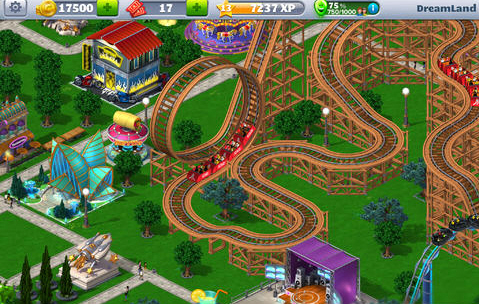
Fourteenth in a series. While catastrophic bug Heartbleed can potentially affect some versions of Android, iPhone users are safe. Apple has confirmed that "iOS and OS X never incorporated the vulnerable OpenSSL software and key web-based services were not affected". So that's some good news.
Featured apps this week include Adobe Lightroom for iPad, RollerCoaster Tycoon 4 Mobile, Carousel (a photo and video sharing app from Dropbox), Family Guy: The Quest for Stuff, Drync for iPad (a wine cataloguing and ordering app) and Warhammer Quest (a hack 'n' slash RPG).
As always, if I miss an app that you think should definitely have been included, let me know in the comments below, or drop me an email.
Here is my selection for this week.
Paid App of the Week
RollerCoaster Tycoon 4 Mobile ($2.99)
Offers in-app purchases.
Based on the popular RollerCoaster Tycoon franchise, this new app from Atari lets you create, manage and share your own amusement park and design and build different rollercoasters.
There are 20 different pre-designed coasters, and over 50 attractions including restaurants, concession stands, hotels and decorations.
The game comes pre-loaded with $5 of in-game currency, although, predictably, that won’t last long.
Free App of the Week
Although this new app is free, you will need a copy of Adobe Lightroom 5 and be a subscriber to Adobe’s Creative Cloud service to use it.
The app lets you organize and edit images, and sync all changes with Lightroom 5 on your desktop. You can use it to edit images from your camera roll, or RAW images from a DSLR. Photos can be shared on all the usual social media sites.
Other Apps
Offers in-app purchases.
A gallery for all your personal photos and videos, Carousel automatically organizes everything and lets you share content with friends. It backs up photos and videos to Dropbox -- in full resolution -- as you take them , so if you misplace your phone or have it stolen, at least you won’t lose your memories along with the device.

Family Guy: The Quest for Stuff
Offers in-app purchases.
Fans of the excellent Family Guy will enjoy this fun game in which you must help Peter Griffin rebuild Quahog after he accidentally destroys the city during an epic battle with the Giant Chicken.
The game features all of the main Family Guy characters and lets you send them on ridiculous quests, and dress them up in funny outfits.
Drync lets you record your favorite wines, complete with a photo of the label, rate them, add notes and then stock up on supplies by ordering as many bottles as you need and having them delivered direct to your door.
Drync has been out for a while on iPhone but is now available for iPad.

Apple’s App of the Week
Offers in-app purchases.
Based on the classic tabletop game, Apple’s free app of the week is a strategy RPG set in the Warhammer world.
The aim is to guide your brave adventurers through the dungeons, collecting loot and experience, and battling a range of foes including Orcs, Trolls and Goblins. In-app purchases include additional characters, such as the Warrior Priest, Archmage and Witch Hunter.
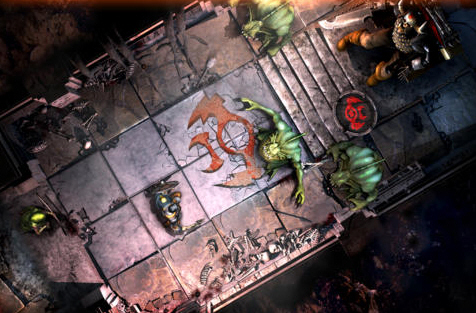
-

Windows XP upgrades give global PC shipments a (small) boost
Publié: avril 10, 2014, 3:02pm CEST par Wayne Williams

IDC and Gartner have released their worldwide PC shipment estimates for the first quarter of 2014 (1Q14), and as expected they once again show a year on year decline, but the severity of the drop has eased compared with the past seven quarters -- thanks, in part, to XP users upgrading their aging systems.
"The end of XP support by Microsoft on April 8 has played a role in the easing decline of PC shipments," says Mikako Kitagawa, principal analyst at Gartner. "All regions indicated a positive effect since the end of XP support stimulated the PC refresh of XP systems. Professional desktops, in particular, showed strength in the quarter. Among key countries, Japan was greatly affected by the end of XP support, registering a 35 percent year-over-year increase in PC shipments. The growth was also boosted by sales tax change. We expect the impact of XP migration worldwide to continue throughout 2014".
According to Gartner, global PC shipments totaled 76.6 million units in the first quarter, a 1.7 percent decline from the first quarter of 2013. IDC puts the shipment figure at 73.4 million units for a year on year a decline of 4.4 percent.
In the US the market has stabilized, shrinking by a mere 0.6 percent from the same quarter a year ago, according to IDC. Rival analyst firm Gartner actually shows a 2.1 percent increase in that market, and Gartner’s Kitagawa sounds a cautious note of positivity: "In terms of the major structural shift of the PC market, the US market is ahead of other regions. The installed base of PCs started declining in 2013, while the worldwide installed base still grew. The U.S. PC market has been highly saturated with devices: 99 percent of households own at least one or more desktops or laptops, and more than half of them own both. While tablet penetration is expected to reach 50 percent in 2014, some consumer spending could return to PCs".
IDC’s Rajani Singh, Senior Research Analyst, Personal Computing, is more pessimistic, however. "PC shipment growth in the United States remained slightly faster than most other regions in the first quarter. However, the passing boost from XP replacements, constrained consumer demand, and no clear driver of a market rebound are expected to keep growth below zero going forward. A rebound in consumer or a continuation of accelerated commercial upgrades could boost growth slightly, but low demand for upgrades in general combined with competition from tablets and 2-in-1 systems limit the growth potential".
Table 1
Preliminary Worldwide PC Vendor Unit Shipment Estimates for 1Q14 (Units)Company 1Q14 Shipments
1Q14 Market Share (%)
1Q13 Shipments
1Q13 Market Share (%)
1Q13-1Q14 Growth (%)
Lenovo 12,907,344 16.9 11,641,152 14.9 10.9 HP 12,248,274 16.0 11,770,542 15.1 4.1 Dell 9,541,231 12.5 8,755,092 11.2 9.0 Acer Group 5,564,358 7.3 6,534,362 8.4 -14.8 Asus 5,310,000 6.9 5,064,431 6.5 4.8 Others 31,001,926 40.5 34,142,058 43.8 -9.2 Total 76,573,135 100.0 77,907,637 100.0 -1.7 Note: Data includes desk-based PCs and mobile PCs, including x86 tablets equipped with Windows 8, but excludes Chromebooks and other tablets.
Source: Gartner (April 2014)
Image Credit: Richard M Lee / Shutterstock
-

How to check if your Android phone is vulnerable to Heartbleed
Publié: avril 10, 2014, 9:59am CEST par Wayne Williams
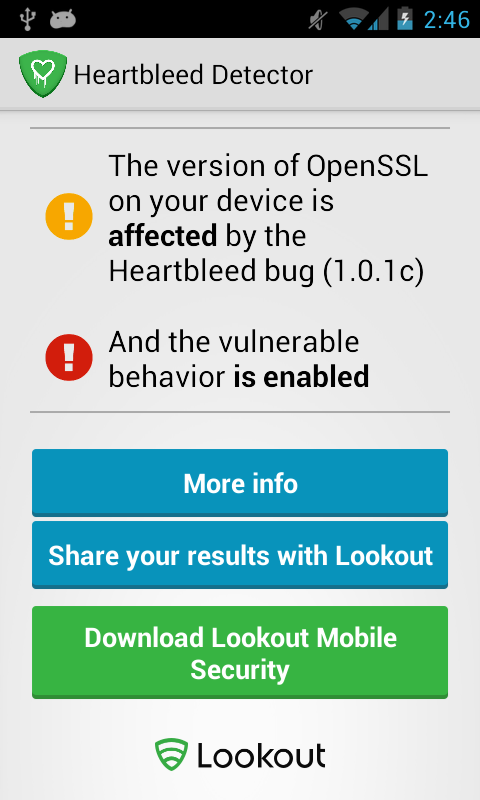
Heartbleed is a critical bug in OpenSSL that allows for the stealing of information that would normally be protected by SSL/TLS encryption. Essentially anyone on the internet can read the memory of systems protected by vulnerable versions of the popular cryptographic software library. The bug affects two-thirds of the Internet and while Google has patched its services, Android remains affected.
If you have an Android phone you can quickly check to see what version of OpenSSL it’s running, and whether the vulnerable feature, called Heartbeats, is enabled.
All you need to do is download and run Lookout’s Heartbleed Detector. It will scan the mobile OS and list its findings. With luck you’ll see a green tick next to the comforting words "Everything is OK". In the worst case scenario you’ll see a red exclamation point next to the words "And the vulnerable behavior is enabled". If you do encounter this message, don’t panic, or ditch your mobile. While the threat is real, the likelihood of you encountering an exploit is minimal. Lookout says it has "not yet seen the Heartbleed vulnerability exploited on a mobile device".
While Heartbleed Detector will warn you if your phone is at risk, it can’t detect if any apps or websites you visit are vulnerable. Neither can it patch the problem -- only Google can do that.
There’s not a lot you can do to protect yourself from the bug but it is worth making sure you’re running the latest version of Android. Go into your device’s settings, and check for any system updates there.
As well as informing you whether your version of Android is vulnerable, the app also provides additional information on the Heartbleed bug.
-

Automate login and bypass the lock screen in Windows 8.1
Publié: avril 9, 2014, 9:16pm CEST par Wayne Williams
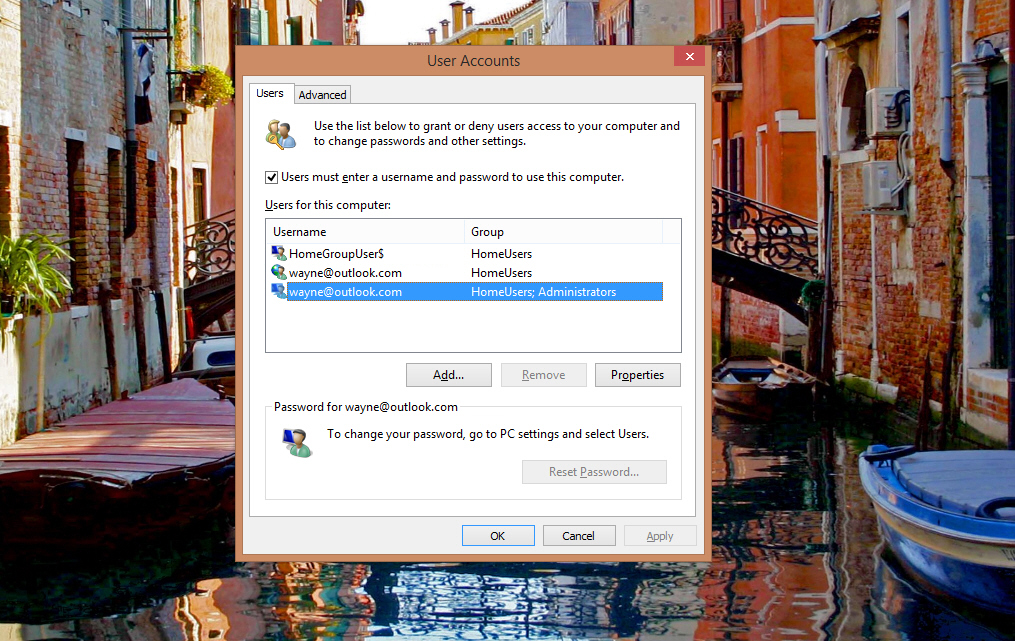
I hate waiting for my computer to boot up. My impatience stems from when I owned an XP system that took upwards of five minutes to get to a usable state no matter what I did to try and speed things along. Scarred by that experience I used to leave my system on permanently (just flipping the monitors off when I stepped away), but obviously that wastes electricity. Switching to an SSD, and configuring Windows to boot as quickly as possible, offered a decent solution.
The problem is Windows 8.1 seems to be designed to slow you down. Once your computer has booted up there is a lock screen to clear, then you have to enter your password and log to in your Microsoft account. Obviously Microsoft has done this for security purposes, and that's great. But if you don't share your computer with other people, and are confident no one will have access to your PC, you can configure the OS to bypass both delaying stages and boot straight in.
From the Start screen type "run". Click on Run and type "netplwiz". OK that and highlight your account. Uncheck "Users must enter a username and password to use this computer". Click Apply. Then enter your password and confirm it. Click OK.
Restart your PC and when Windows loads it will automatically log you in. To go straight to the desktop, type "Navigation" on the Start or Apps screen, open Navigation Properties, and check "When I sign in or close all applications on a screen, go to the desktop instead of Start". Apply and OK it.
-

Windows 8.1 Update: Microsoft invites you to meet the new Windows
Publié: avril 8, 2014, 6:09pm CEST par Wayne Williams
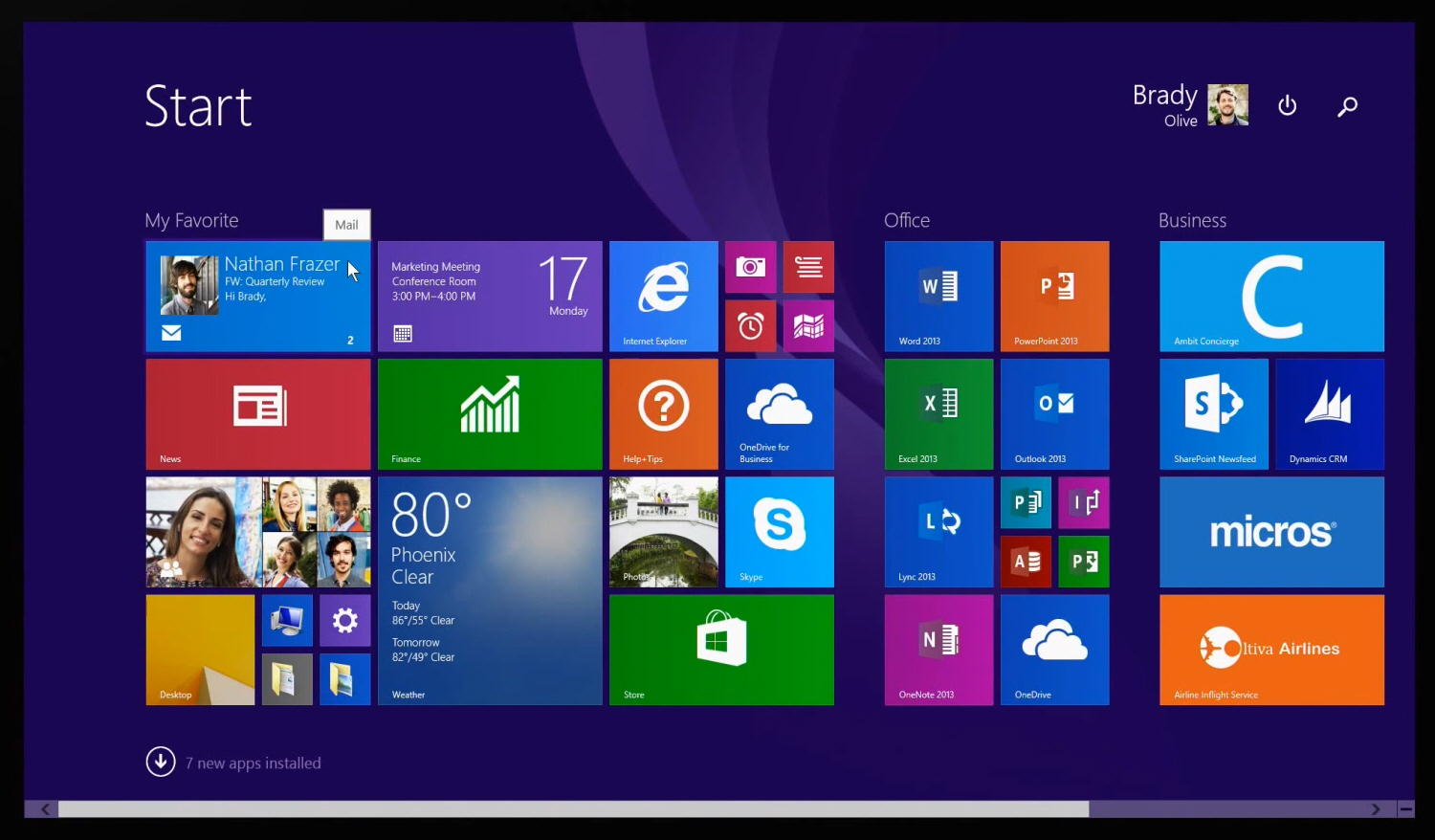
Windows 8.1 Update is out today, as if you didn’t know, and is a mandatory update for all users of the latest iteration of the tiled OS.
We’ve covered it in depth here, and Microsoft released a power guide for it yesterday, but if you still want to know more about what’s new, and why you might want to consider upgrading to "New Windows" Microsoft has rolled out a selection of introductory videos.
There are four to watch: "Meet the New Windows", "Make Windows All About You", "Get Around Faster With The Charms", and "Your Familiar Desktop, Only Better". Or, as the titles in the last one claim, "Your Familier Desktop, Only Better". Where’s a spellchecker when you need one?
Each of the videos lasts three-four minutes and is packed with information on how to do lots of things with the new OS. They are all worth watching, although admittedly the narration style quickly gets irritating (maybe it’s just me).
Have you tried out Windows 8.1 Update yet? What do you think of it?
-

Best iOS apps this week
Publié: avril 4, 2014, 1:39pm CEST par Wayne Williams
 Thirteenth in a series. Apple has confirmed that its Worldwide Developers Conference (WWDC), will be kicking off on Monday June 2, at San Francisco’s Moscone West. The five day event will give developers (and the press of course) the chance to "learn about the future of iOS and OS X". At last year’s conference Apple unveiled iOS 7, Mac OS X 10.9 Mavericks, a new MacBook Air lineup, iTunes Radio, iCloud Keychain, and much more.
Thirteenth in a series. Apple has confirmed that its Worldwide Developers Conference (WWDC), will be kicking off on Monday June 2, at San Francisco’s Moscone West. The five day event will give developers (and the press of course) the chance to "learn about the future of iOS and OS X". At last year’s conference Apple unveiled iOS 7, Mac OS X 10.9 Mavericks, a new MacBook Air lineup, iTunes Radio, iCloud Keychain, and much more.In other news, Microsoft says its newly released Office apps have been downloaded 12 million times since launch.
Some of the featured apps released or updated this week include a fantastic mind bending game inspired by the works of M. C. Escher, a powerful calendar and events manager, an animated gamebook/RPG, and an iPhone walkie-talkie.
As always, if I miss an app that you think should definitely have been included, let me know in the comments below, or drop me an email.
Here is my selection for this week.
Paid App of the Week
Monument Valley ($3.99)
A hotly anticipated physics platform game, the aim of Monument Valley is to manipulate impossible Escher-style architecture and guide the silent princess Ida through optical illusions and palaces and temples from around the world.
It’s very easy to play -- you just twist and drag to reshape the architecture. The game is stunning to look at, and just the right side of challenging. I haven’t had a chance to play it much yet, but this is very much my type of game. Apparently it's pretty short though (under an hour to complete) so I'll have to ration myself to a couple of levels a day!
Free App of the Week
Offers in-app purchases.
This app brings stickers from some of Hollywood’s hit animated TV shows and movies directly to iOS. It includes the cast of Family Guy, American Dad, Ice Age and Rio. More titles are coming soon.
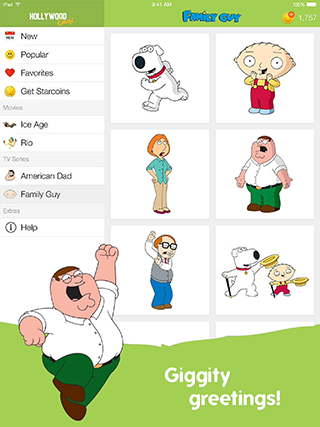
Other Apps
FTL: Faster Than Light ($9.99)
One of the more expensive games on iOS, this port of the popular PC/Mac RTS looks to be well worth the asking price. Your challenge is to run a spaceship trying to save the galaxy. You give orders to the crew, manage ship power distribution and select targets during battle. You can upgrade your ship and unlock new ones.
When you die you don’t come back, so you have to be very careful not to take unnecessary risks.
The game includes the FTL: Advanced Edition expansion pack which adds new ships, enemies, events, weapons, and more.
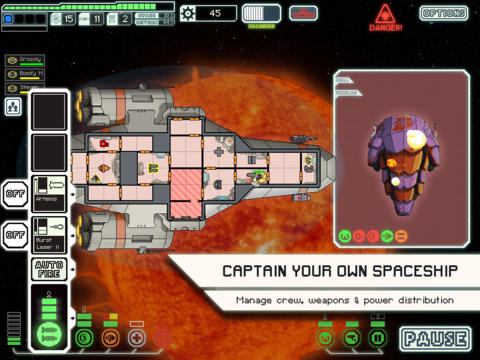
Fantastical 2 for iPad ($9.99).
Although it’s similar to the iPhone version, the popular calendar app has been "redesigned and reimagined" for the iPad. Rather than simply blowing up the design to fill the extra space, Flexibits has introduced The Fantastical Dashboard which gives you access to multiple views and lets you easily switch between them.
Creating events or reminders is very straightforward, and you can type or speak your instructions (unless you have an iPad 2 as dictation isn’t supported on that device).
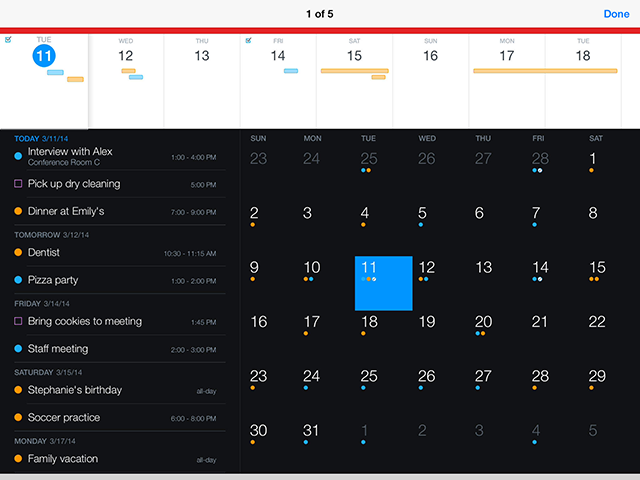
Offers in-app purchases.
The push-to-talk and multimedia messaging app has been completely redesigned. As well as a new front end, it delivers faster access to new messages (notifications are now pre-loaded on devices) and extended battery life.
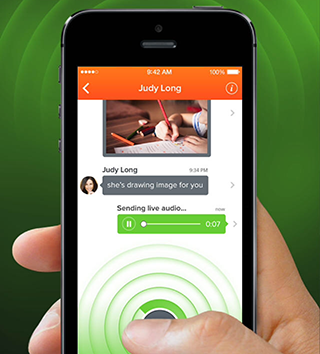
Apple’s App of the Week
Offers in-app purchases.
This week’s free release is a cross between a gamebook and an RPG. It features hand drawn illustrations and attractive 3D graphics. You can create your own character and write your own story by making multiple choices. Combat is in real time (no rolling dice here) and something Infinity Blade fans will really appreciate. There are puzzles to keep you occupied too.
There are four parts to the Lone Wolf story and this is the first. Act Two: Forest Hunt has just been released and will set you back $4.99. Or you can get the season pass for $9.99.
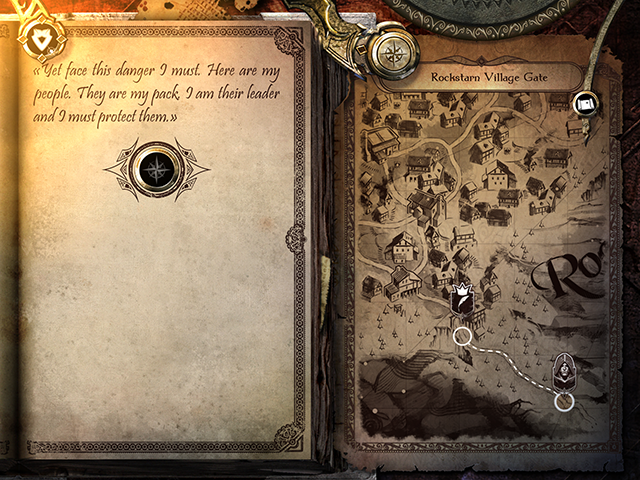
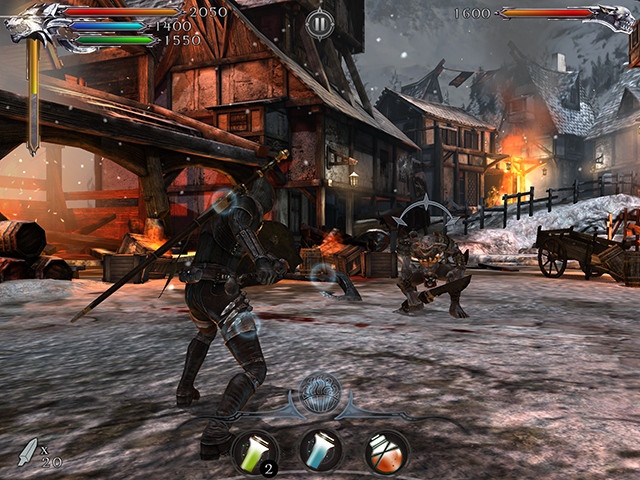
-

Windows 8.1 Update -- Microsoft finally gets it right
Publié: avril 3, 2014, 1:03pm CEST par Wayne Williams

In an effort to make its tiled OS more popular, Microsoft has been forced to make a series of compromises. People haven’t been rushing out to buy touch screen computers, and Windows tablets lag a long way behind Android and iOS devices, so with the Windows 8.1 Update Microsoft has made changes designed to appeal to keyboard and mouse users and further bridge the gap between the desktop and the Modern UI.
Sure, the result is a Frankenstein product, and the compromises made along the way are obvious and awkward, but you know what? Windows 8.1 with Update installed, is actually a damn fine OS. If this was the product that Microsoft had rolled out as a successor to Windows 7, I suspect it would have been a lot more popular and received a lot more praise.
When I first used Windows 8.1 with a leaked version of the Update installed (in a virtual machine), I wasn’t sure I liked it. But dipping in and out over time, my opinion slowly altered. And now using the full, official, release on my actual PC I find myself really approving of the changes.
Microsoft's latest raft of compromises look odd to existing users -- because we know they’ve been shoehorned in -- but to a newcomer it all makes perfect sense. Adding a menu bar to Modern apps is great -- it makes them easier to close. Adding the taskbar to the Start screen is excellent -- you can jump straight to any running program using the mouse. Including Modern apps on the desktop taskbar is a smart move. It blurs the lines between the two modes, and I really, really like it.
When Windows 8 came out I couldn’t recommend it to anyone. I didn’t rate it, and couldn’t get behind it. Windows 8.1 was a marked improvement, and my view changed. I liked it, and recommended it, but not wholesale. I knew it wasn’t for everyone.
Windows 8.1 Update, I’ll happily recommend to all. Sure, there’s still a slight learning curve, but it’s a much gentler one. Spend half an hour learning your way around, and you’ll be fine. Yes, there’s no Start menu, but the Start screen is great, and the tweaks Microsoft has made to it are good ones. Highlighting recently installed software makes it so much easier to find new programs and apps.
If you feel the absence of a Start menu undermines your productivity, install a third party one -- there are plenty of choices. Don’t let that one thing stand in the way between you and what is now a near perfect OS.
If you hate the Start screen, you don’t need to go near it. If you want nothing to do with full screen Modern apps, you don’t need to use or install them.
Sure, certain niggles remain but Windows 8.1 is still trying to be an OS that will work on a range of devices, from the tiniest tablet to the most powerful multi-screen PC, so that’s inevitable. And forgivable. The pluses easily outweigh the minuses.
At Build we saw a glimpse of a future Start menu, which -- for me -- would be another step in the right direction (backwards, some would say, but it doesn’t have to be). Microsoft is rebuilding Windows 8.x as it goes, refining and improving. The latest incarnation is very different from the initial release, and future changes -- like adding a Start menu -- would further distance the OS from the original vision. But really that’s no bad thing.
If you’ve been sitting on the fence, undecided whether to upgrade to Windows 8.1, now is the time to jump. You won’t regret it.
Image Credit: R.Iegosyn/Shutterstock
-

Windows 8.1 Update will be available on April 8 -- here’s what’s new
Publié: avril 2, 2014, 7:14pm CEST par Wayne Williams
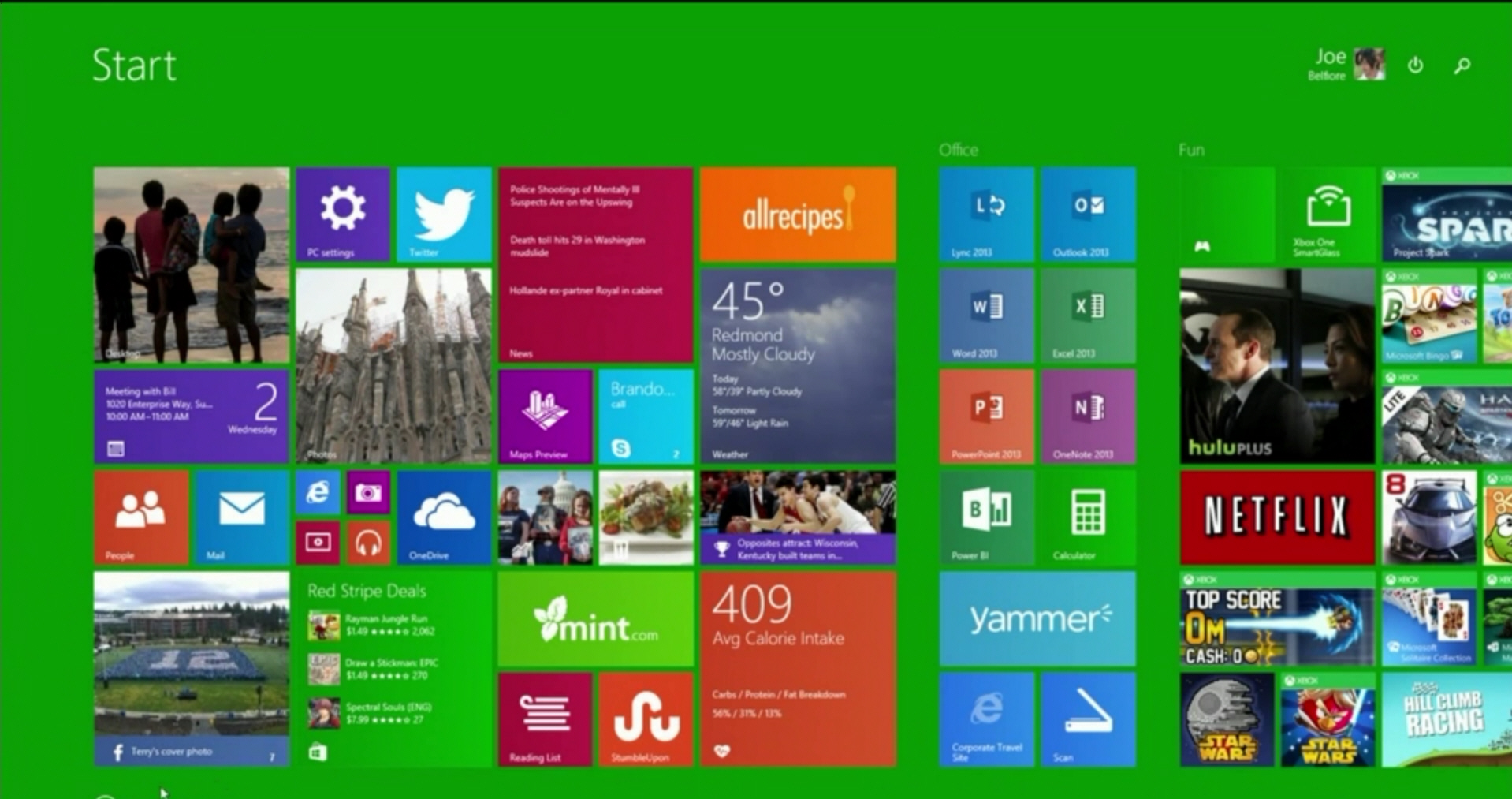
Microsoft has just unveiled the Windows 8.1 Update at Build, and it will be rolling it out to users of the tiled operating system on April 8. MSDN subscribers can download it today.
Thanks to leaks, we already knew a lot about it, and even posted our thoughts here previously on BetaNews. I called it a Frankenstein product stitched together with compromises, which it undoubtedly is. My colleague Mark Wilson calls it the final nail in Windows 8.1’s coffin, but Brian Fagioli thinks it’s great. You’ll soon be able to try it out for yourself, but in the meantime here’s what it offers.
First up, yes the OS will automatically boot to the desktop if you’re using a keyboard and mouse system. Great news for many people who hate the Modern UI.
There are two new buttons on the Start screen next to your username -- Search, which opens the Search charm, and Power, which lets you shutdown, restart, or send your computer to sleep. There’s a new PC Settings button on the Start screen as well, so you don’t have to mess around in Charms if you want to make changes in Windows.
Mouse users can now sort the Start screen in a more traditional way. Right-click an app and a context menu will pop up that will allow you to unpin that item from Start screen and/or taskbar, resize its tile or uninstall it. You can select and move tiles around by holding down Ctrl and selecting a bunch at once.
You can also now pin Windows Store apps to the taskbar by right-clicking an app, or holding down on it, and selecting Pin to Taskbar. The Windows Store app is pinned there by default. The OS can display all running apps on the taskbar.
Windows Store apps now come with a title bar, making it easier to minimize or close them, and split left or right. You can access the taskbar from within running apps. The taskbar also now pops up when you move your mouse to the bottom of a running Modern UI app, so you can easily switch between apps and "legacy" programs.
The store UI is being improved to make it easier to use with the keyboard and mouse too.
If, like me, you prefer to have the Apps screen as the default rather than the Start screen, there’s a new alphabetical view which lets you filter apps by letter.
When you install a new app, it will be highlighted in the Apps list to make it easier to find -- about time!
Finally, Internet Explorer 11 has been tweaked and comes with a new enterprise mode which lets IT managers deal with legacy sites by changing the user agent string, and how ActiveX controls are invoked, re-enable degraded features, and so on.
So that’s what new. What do you think of the changes? If you’ve yet to upgrade to Windows 8.1 will this persuade you to make the leap?
-

Want a second opinion on how badly Windows 8.x is doing?
Publié: avril 2, 2014, 3:54pm CEST par Wayne Williams

This year’s Build developer conference is set to get underway shortly, and Microsoft will, among other things, be introducing a major update for Windows 8.1 designed to make it more appealing to keyboard and mouse users.
Yesterday I reported on NetMarketShare’s breakdown of desktop operating system market share in March, which showed XP losing some ground, Windows 7 growing nicely, and Windows 8.x creeping upwards still, but very slowly. Today StatCounter releases its figures, and while the percentages are different, the overall picture remains just as gloomy for Microsoft’s tiled operating system.
StatCounter gets its numbers by analyzing 15 billion monthly pageviews across a network of over three million global websites, which means it offers up a pretty solid snapshot of the state of the market.
According to the firm, Windows 7 is easily the top OS, with 54.68 percent (NetMarketShare has it at 48.77 percent). Windows XP is second, with 18.61 percent (a big drop from NetMarketShare’s 27.69 percent) and then comes… nope not Windows 8, but Mac OS X with 8.58 percent.
Windows 8 arrives in fourth with 7.85 percent (6.41 percent according to NetMarketShare) and is followed in fifth place by Windows 8.1 with 4.48 percent (not too different from NetMarketShare’s 4.89 percent).
Combined, StatCounter places Windows 8.x at 12.33 percent, a point above NetMarketShare’s 11.30 percent.
Interestingly, if you look at just the US, Mac OS X claims the second spot overall with 16.9 percent. Windows 8.x is on 13.02 percent.
That’s just desktop operating systems, and of course Windows 8.x is also available on tablets, so how is it fairing there?
Awfully.
According to StatCounter, globally iOS leads the way with 72.58 percent of traffic, Android is in second with 23.98 percent, and Windows 8 RT is way, way, way down with 0.26 percent.
As for phones, Android is the clear leader with 48.26 percent, iOS follows with 23.6 percent, and Windows Phone is on 2.22 percent.
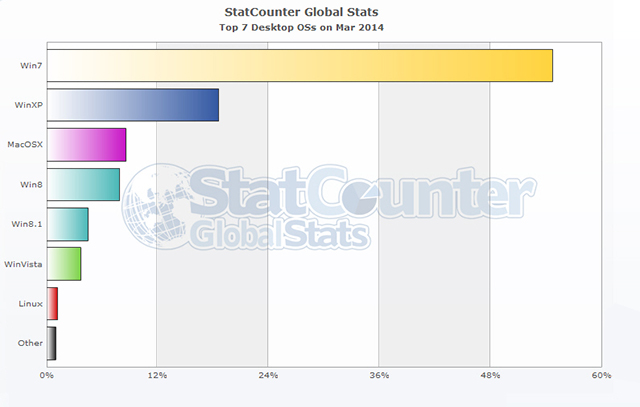
Image Credit: Monkey Business Images/Shutterstock
-

Happy 10th birthday Gmail -- Google's greatest ever April Fools' Day surprise
Publié: avril 1, 2014, 4:50pm CEST par Wayne Williams

Whether you love or hate them, Google’s April Fools' Day announcements are something we’ve come to expect, and they’re usually pretty creative, even if they don’t fool many people. Some of this year’s pranks include Google+ Auto Awesome Photobombs with The Hoff, Gmail Shelfie and Google Maps: Pokémon Challenge.
Ten years ago though, Google made what was easily its greatest April Fools' announcement ever -- introducing the world to Gmail, a new free webmail service. Few people fell for it though, as the 1GB of free storage being offered was too fantastical. Hotmail, the market leading service at the time, gave its free users just 2MB and had a policy of ruthlessly deleting new messages once that limit was reached. If you wanted to increase the size of your inbox to 10MB you could, but at the cost of $19.95 a year. And here was a search engine promising 500 times as much storage, for free? Yeah, right. Nice try Google!
The new invite-only service turned out to be real though, and was unlike any existing webmail product, with fancy threaded conversations, a powerful anti-spam filter, labels in place of folders and searching instead of sorting. It was nothing short of revolutionary.
I was lucky enough to get an invite from a friend soon after it launched, and it’s been my default email service ever since (although I did briefly route my messages through Outlook.com).
Over the past decade, Google has significantly increased the free storage on offer, and added numerous features, including a built-in spellchecker, themes, and optional Labs functions, including the excellent Undo Send, which I couldn’t be without.
Gmail has also undergone a few fairly minor cosmetic tweaks over the years, but hasn’t really changed drastically. Some of the newer additions, such as god-awful tabs view, have been about as welcome as a poke in the eye, but at least they’ve been optional.
The truth is though, in recent years, Gmail (on the desktop at least) has been allowed to stagnate. Once it was the hotbed of innovation, now it’s simply still a damn good webmail service, that’s falling behind Outlook.com, Microsoft’s reinvigorated Hotmail replacement.
Having been at the top of its game for much of the past decade, I suppose we can cut Gmail some slack, but it would be great to see Google rolling out some big new features for the service in the near future not just minor tweaks, or ones designed to ram ugly adverts down our throats.
Do you still use Gmail or have you switched to a different service?
-

Where are XP users moving to? Windows 7
Publié: avril 1, 2014, 11:59am CEST par Wayne Williams
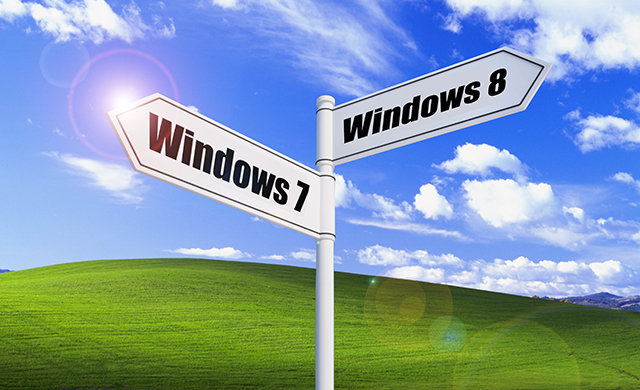
In a week Windows XP will reach its end of life. Microsoft has done its best to tell people they need to switch operating systems or face the consequences, but if the latest desktop OS share trend from NetMarketShare is anything to go by, Windows XP users really don’t seem too worried. In March, XP’s share dropped just 1.84 percent, from 29.53 percent to 27.69 percent. Hardly the signs of a mass exodus, although at least the share fell this month, unlike the previous two, when XP usage actually went up.
Microsoft has, naturally enough, pushed XP users towards upgrading to Windows 8.x, or "new Windows" as the tech giant likes to refer to it, but Windows 7, or "old Windows" proved yet again to be far the bigger draw.
While Windows 8 actually increased share in March (only by 0.03 percent, but the usage has been falling steadily as users upgrade to 8.1), and Windows 8.1 gained some share (0.59 percent), the combined Windows 8.x increase is a mere 0.62 percent (up from 10.68 percent to 11.30 percent).
Windows 7 on the other hand, rose from 47.31 percent to 48.77 percent, an increase of 1.46 percent, or more than double Windows 8.x’s growth.
There’s no (accurate) way of knowing how many XP users will swap their Windows systems for an iPad or Android tablet at this point, but it’s safe to assume reasonable numbers will go that route.
This coming month will be an interesting one for Windows 8.x, because as well as XP reaching its end of life -- which should see a greater number of migrating XP users in search of a new home -- Windows 8.1 Update will be released. This service pack style update makes boot-to-desktop the default mode and adds various keyboard and mouse friendly tweaks to the OS, which might make it more appealing to PC traditionalists.
Don’t expect the tiled OS to suddenly gain huge amounts of market share though. In the month the infinitely superior Windows 8.1 arrived as a free update to Windows 8, the combined 8.x managed an increase of just 0.36 percent.
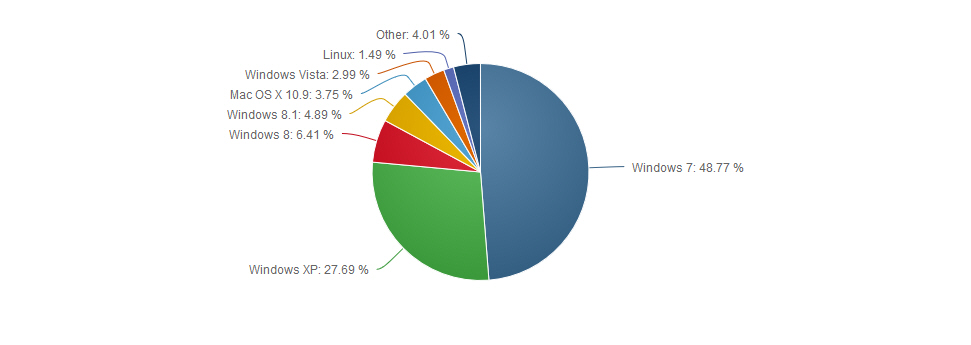
-

LaCie Fuel expands iPad capacity by 2TB
Publié: mars 31, 2014, 7:16pm CEST par Wayne Williams

Whatever size tablet you opt for, there’s a good chance you’ll fill the available space in no time at all. Apps, photos, and HD movies all consume a sizable amount of space, forcing you to manage your storage wisely.
If you own an iPhone or iPad you can boost your device’s available capacity with an LaCie Fuel 2.5 inch wireless drive. The LaCie Fuel offers wireless streaming to up to five devices without an internet connection, and Airplay compatibility for mirroring content on a larger screen. It can also create its own Wi-Fi network and act as a hotspot when connected to the internet via Wi-Fi.
Of course it's the size of the drive that really matters, and Seagate Technology has announced it is set to double the available maximum capacity from 1TB to 2TB, providing users with more than enough space to store over 1,000 HD movies.
The 2TB LaCie Fuel can be preordered through LaCie for $249.99 (USA only) and will be available globally in April.
-

Microsoft promises not to read customer emails again
Publié: mars 28, 2014, 9:08pm CET par Wayne Williams

After repeatedly bashing Google for going through its user's personal messages in the whole "Don't Get Scroogled by Gmail" campaign, Microsoft went one step beyond automatically scanning messages for keywords in order to serve up adverts, which Google does, and actually read a user’s private email, which Google doesn’t (as far as we know anyway).
Microsoft felt its actions were justified -- it was trying to prove a blogger had leaked pre-release Windows builds -- but users were rightly concerned that Microsoft had shown it was willing and able to read their personal emails should it choose to. The statement the company issued in light of the concern over its practices was hardly reassuring, and suggested Microsoft would do it again should the need arise. Today, Brad Smith, General Counsel & Executive Vice President, Legal & Corporate Affairs, Microsoft, has posted a follow up blog that essentially says Microsoft made a mistake and will be making changes to ensure reading customer emails in this way won't happen again.
"Effective immediately, if we receive information indicating that someone is using our services to traffic in stolen intellectual or physical property from Microsoft, we will not inspect a customer’s private content ourselves. Instead, we will refer the matter to law enforcement if further action is required", Smith says.
In addition to changing the company policy, Smith also says "in the coming months we will incorporate this change in our customer terms of service, so that it’s clear to consumers and binding on Microsoft".
There’s still no hint that Microsoft actually regrets its action in the previous case -- "our own search was clearly within our legal rights" Smith says, repeating the point made in the original statement -- but at least this is a step in the right direction.
In addition, Microsoft says it will be partnering with The Center for Democracy and Technology and The Electronic Frontier Foundation to help identify, flesh out and discuss important customer privacy issues like this in the future.
Photo Credit: auremar/Shutterstock
-

Microsoft promises not to read user emails again
Publié: mars 28, 2014, 9:08pm CET par Wayne Williams

After repeatedly bashing Google for going through its user's personal messages in the whole "Don't Get Scroogled by Gmail" campaign, Microsoft went one step beyond automatically scanning messages for keywords in order to serve up adverts, which Google does, and actually read a user’s private email, which Google doesn’t (as far as we know anyway).
Microsoft felt its actions were justified -- it was trying to prove a blogger had leaked pre-release Windows builds -- but users were rightly concerned that Microsoft had shown it was willing and able to read their personal emails should it choose to. The statement the company issued in light of the concern over its practices was hardly reassuring, and suggested Microsoft would do it again should the need arise. Today, Brad Smith, General Counsel & Executive Vice President, Legal & Corporate Affairs, Microsoft, has posted a follow up blog that essentially says Microsoft made a mistake and will be making changes to ensure reading customer emails in this way won't happen again.
"Effective immediately, if we receive information indicating that someone is using our services to traffic in stolen intellectual or physical property from Microsoft, we will not inspect a customer’s private content ourselves. Instead, we will refer the matter to law enforcement if further action is required", Smith says.
In addition to changing the company policy, Smith also says "in the coming months we will incorporate this change in our customer terms of service, so that it’s clear to consumers and binding on Microsoft".
There’s still no hint that Microsoft actually regrets its action in the previous case -- "our own search was clearly within our legal rights" Smith says, repeating the point made in the original statement -- but at least this is a step in the right direction.
In addition, Microsoft says it will be partnering with The Center for Democracy and Technology and The Electronic Frontier Foundation to help identify, flesh out and discuss important customer privacy issues like this in the future.
Photo Credit: auremar/Shutterstock
-

Best iOS apps this week
Publié: mars 28, 2014, 2:46pm CET par Wayne Williams
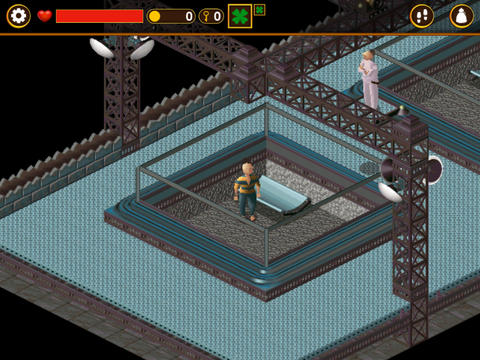
Twelfth in a series. Microsoft rolled out Office for iPad this week, and it's excellent. Like Apple iWork, it's not a single app but rather three individual apps for Word, Excel and PowerPoint (an updated OneNote is available too). You need an Office 365 subscription to get the most out of it, as without one you can only view documents.
Other featured apps this week include a modern remake of Little Big Adventure (a classic game from the nineties), a touch typing tutor, a drawing app for children, a sweeping and rather too addictive Game of Thrones RPG, a Captain America tie-in, and a group text messaging app.
As always, if I miss an app that you think should definitely have been included, let me know in the comments below, or drop me an email.
Here is my selection for this week.
Paid App of the Week
Little Big Adventure ($3.99)
Originally released on the PC in 1994 (was it really that long ago?), Little Big Adventure -- also known as Relentless: Twinsen's Adventure -- gets a new lease of life on iOS.
In the game, you take on the role of Twinsen, a young hero living on Citadel Island. Locked up by evil dictator Dr. FunFrock you'll need to escape from your cell and find a way of saving your planet.
Although it’s been 20 years since the original was released, the game has aged well, and the updates added to make the most of the touchscreen abilities really improve the gameplay.
Free App of the Week
Well no surprises here that my free app this week is Microsoft's new suite of Office apps. Before they were launched I wasn't really expecting great things, but Microsoft has crafted something very special here. Sure, you need an Office 365 subscription to use them, but that makes a lot of sense from Microsoft's perspective. The new apps have rocketed to the top of the Free apps list already, with Word currently sitting at the top, and Excel and PowerPoint taking the third and fourth spots respectively.
You can read all about the new apps here.
Microsoft Office Mobile for iPhone has also undergone some changes and is now free for home use. The app lets you view and edit your Office content on the go.
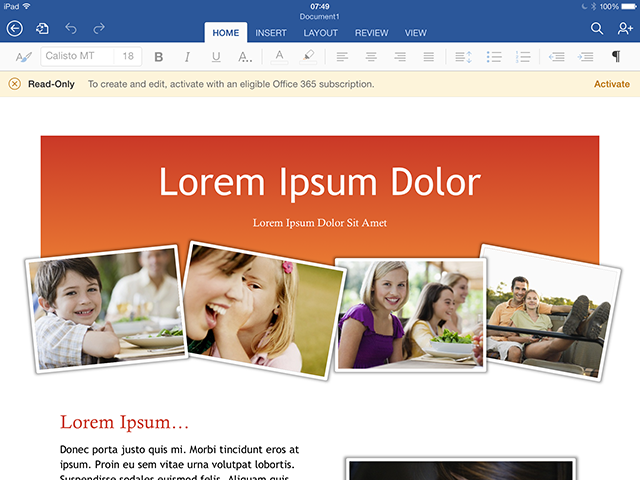
Other Apps
Offers in-app purchases.
Game of Thrones is set to return to TV screens in a week, and to get you in the mood, Kongregate has released an iOS version of the Facebook and web game that is already enthralling some 2.5 million players around the globe.
The game offers improved Retina graphics and Game Center leaderboards and takes place in the days before the death of the King’s Hand. You choose your character’s background and swear fealty to one of the great houses -- Stark, Lannister, Targaryen, Baratheon, Tyrell, or Greyjoy. All the familiar characters are here, and there are over 2,500 quests to undertake.
New quests are added each week, as well as updates to match the latest episodes as they are shown on HBO.
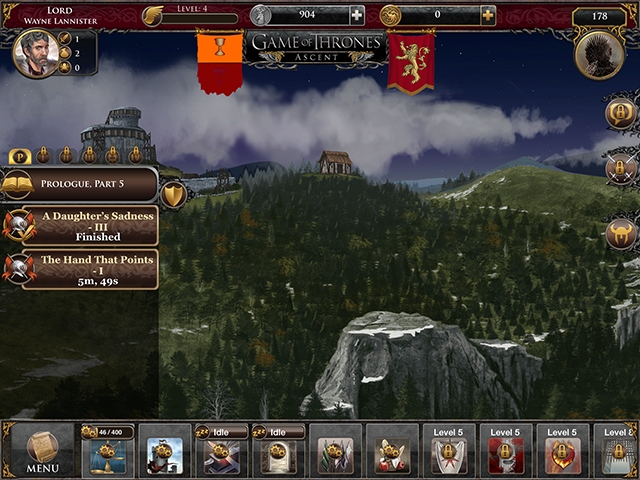
Schoola helps parents shop for kids' clothes and help their school in the process. It’s a massive online store for brand name "like-new" kids clothes at major savings -- with a portion of each sale (40 percent) going back to the school from where it was donated. More than 3,000 schools across the USA already support it.
The app gives parents access to over 2,000 brands, including Gap, Hanna Andersson, Tea Collection and Mini Boden, and you get 40 percent off your first order (the promo code is included in the app).
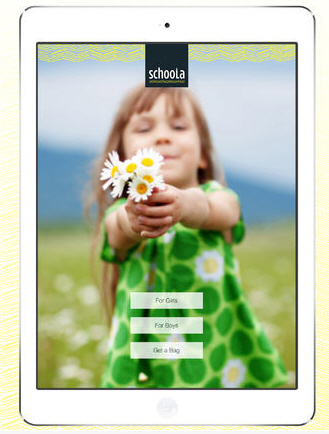
iColorType ($2.99)
The iColorType iPad app teaches children (or adults) how to touch type using a colored keyboard. Would be typists learn the correct motor skills and build muscle memory by associating each finger with the corresponding colored keys on the keyboard. The app includes an introductory overview, typing speed test, short words beginner lesson, and full lesson plan with 10 learning modules. It's perhaps overpriced, but if you want to learn how to type properly it can definitely help.
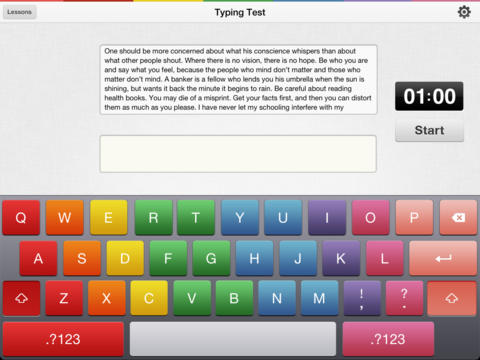
Captain America: The Winter Soldier ($2.99)
Offers in-app purchases.
Gameloft's official game of the Marvel movie blockbuster lets you play as Captain America and lead a S.H.I.E.L.D. Strike Team against several nefarious criminal organizations. The game offers fun tactical action gameplay, and asynchronous multiplayer so you can join a clan and battle rival players.
The graphics have a stylish comic book look to them.
Greet & Send lets users send group text massages with a personal touch. So if you want to fire off holiday greetings, invitations, thank you notes and more to a whole bunch of people, you don’t have to do each one individually, or send a boilerplate message. You can add your friend’s name to the message itself by clicking his or her name from the contacts list on your phone. The app also lets you edit the name on the message, prior to sending it.
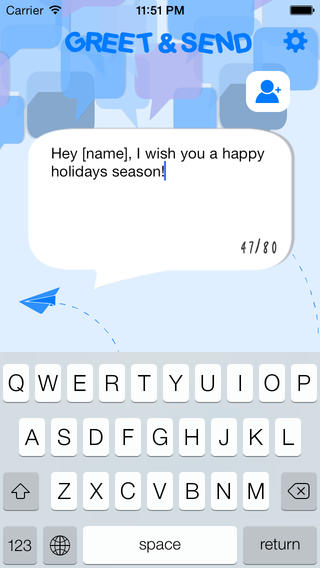
Apple’s App of the Week
Offers in-app purchases.
This week’s free deal is a drawing app aimed at children aged between 0 and 5. To use it you’ll need your iOS device (iPhone or iPad), the app, and a pen and piece of paper. The app encourages children to draw an animal body around the outside of the device. There are funny animations designed to help children master the alphabet.

-

Windows' future is looking increasingly bleak
Publié: mars 27, 2014, 5:09pm CET par Wayne Williams

Analyst Gartner has just released its latest worldwide devices forecast, which shows, unsurprisingly, traditional PC shipments declining, and tablets, mobile phones, and ultramobiles (hybrid and clamshell) all growing. In total, device shipments are set to rise 6.9 percent, up from the 4.8 percent growth achieved last year.
There are few surprises in the report. Shipments of mobile phones, the most popular device type in the market, are expected to reach 1.9 billion units in 2014, a 4.9 percent increase from 2013. The worldwide tablet market is forecast to grow 38.6 percent in 2014, shipments of traditional PCs are forecast to total 276.7 million units in 2014 (a 6.6 percent decline from 2013), and ultramobiles are set to grow from 21.1 million in 2013 to 37.2 million this year. Gartner has also forecast shipments by operating systems, and while Windows still shows growth, overall it's far from happy times ahead for Microsoft.
The meteoric rise of mobile devices shows Microsoft was right to try and counter the threat of Android and iOS with a new touch-friendly OS. No one argues with that, but unfortunately the tech giant's move came a little too late in the day, and the gamble to produce an OS designed to run on touch and keyboard and mouse systems really hasn't paid off. Windows 8.x growth is plateauing, and Windows tablets and phones are hardly taking the world by storm.
Android’s growth on the other hand is nothing short of spectacular. Google's mobile OS shipped 879.8 million units last year, and is expected to break the billion and reach 1,171 million this year, continuing to grow to 1,358.3 million in 2015. Gartner says iOS tablet growth has slowed in North America and Apple will need to reinvigorate its replacement cycle, but still shows iOS/Mac OS growing from 241.4 million in 2013, to 286.4 million in 2014 and reaching 324.5 million in 2015.
So what's happening with Windows? Gartner says 324.1 million units were shipped in 2013, and the number will grow to 339.1 million this year, reaching 379.3 million in 2015. Still ahead of iOS/Mac OS, but with the gap closing significantly.
Let's put that in percentage terms. From 2013 to 2015, Gartner sees Android growing by 54.39 percent. In the same time frame iOS/Mac OS will grow by 34.42 percent. And Windows? 16.67 percent -- and that’s with it appearing on a broad range of devices from various big manufacturers.
Worldwide Device Shipments by Operating System (Millions of Units)
Operating System 2013
2014
2015
Android 879,8
1,171.0
1,358,3
Windows 325,1
339,1
379,3
iOS/Mac OS 241,4
286,4
324,5
Others 873,2
683,5
565,2
Total 2,319.6
2,479.8
2,627.0
Source: Gartner (March 2014)
Windows is still growing, but the future for the operating system doesn’t exactly look rosy. While businesses and power users will still turn to Microsoft’s brand for productivity purposes, casual users are looking elsewhere, and will continue to do so. Windows XP is set to come to its end of life very shortly, and you can bet far more of those migrating users will switch to Android devices than upgrade to Windows 8.x.
A few years ago, the suggestion that Windows could be so easily deposed from the top of the OS tree would have had you laughed out of town. Now, for the first time in twenty or so years, Microsoft is looking increasingly vulnerable in an area where it has dominated for so long. Chrome OS is not, as of yet, posing any real threat to Windows, but the fact it exists on products from the likes of Acer, HP, ASUS and LG, shows the potential for disruption.
These are tough times for Microsoft, and things look set to get even tougher in the coming years.
Photo Credit: rnl/Shutterstock
-

Watch Microsoft CEO Satya Nadella’s press briefing here LIVE
Publié: mars 27, 2014, 2:59pm CET par Wayne Williams

At 10am PT, Microsoft CEO Satya Nadella is set to discuss the intersection of cloud and mobile at an event in San Francisco.
Although there’s no mention of it in the details we’ve seen, and no pre-briefings have been given, it’s widely expected that Office for iPad will be unveiled at the event. This will be a big move for Microsoft if it turns out to be the case, but unlike Apple's iWork suite for iPad, which is sold for a one-time fee (and provided free on new iPads), Microsoft will likely tie access into Office 365.
Office is already available on iOS, but only optimized for iPhones, and again you need to be an Office 365 subscriber to use it. You can access it on an iPad of course, but viewing it in a tiny window, or blowing it up to 2x proportions, is far from ideal.
Of course, iOS has plenty of decent office suites available already, so the appeal of Office for iPad at this point of time, and tied into Office 365 as well, is debatable. What it does do is slightly undermine one of Surface’s major selling points -- try to find a Surface ad that doesn’t crow about Office’s inclusion.
Anyway, we’ll find out what Microsoft has planned soon enough.
The live webcast starts at 10am PT/1pm ET/5pm GMT so be sure to tune in then.
-

Watch Microsoft CEO Satya Nadella’s Office for iPad announcement
Publié: mars 27, 2014, 2:59pm CET par Wayne Williams

At 10am PT, Microsoft CEO Satya Nadella is set to discuss the intersection of cloud and mobile at an event in San Francisco.
Although there’s no mention of it in the details we’ve seen, and no pre-briefings have been given, it’s widely expected that Office for iPad will be unveiled at the event. This will be a big move for Microsoft if it turns out to be the case, but unlike Apple's iWork suite for iPad, which is sold for a one-time fee (and provided free on new iPads), Microsoft will likely tie access into Office 365.
Office is already available on iOS, but only optimized for iPhones, and again you need to be an Office 365 subscriber to use it. You can access it on an iPad of course, but viewing it in a tiny window, or blowing it up to 2x proportions, is far from ideal.
iOS has plenty of decent office suites available already, so the appeal of Office for iPad at this point in time, and tied into Office 365 as well, is debatable. What it does do is slightly undermine one of Surface’s major selling points -- try to find a Surface ad that doesn’t crow about Office’s inclusion.
Anyway, we’ll find out what Microsoft has planned soon enough.
The live webcast starts at 10am PT/1pm ET/5pm GMT so be sure to tune in then.
-

Songza to deliver weather-driven music recommendations
Publié: mars 27, 2014, 2:04pm CET par Wayne Williams
Songza is an online music streaming service that attempts to predict what you're doing or feeling -- based on day, time, device type, location and past behavior -- and provide a curated playlist to suit. It offers playlists for a range of diverse activities such as waking up, working out, commuting, concentrating, unwinding, entertaining, and sleeping.
Today, the service adds a new trick -- providing music to match the current weather. Thanks to a new partnership with The Weather Company, parent to The Weather Channel, Songza will now attempt to use weather data to better predict the "context" or state of mind of the user.
"Songza’s mission is to be everyone’s personal music concierge" says Elias Roman, co-founder and CEO of Songza. "That kind of premium experience requires being excellent at two things: expert human content curation and algorithmic, data-driven anticipation of users’ content needs, so customers don't have to work to find the perfect thing. With new data provided by The Weather Channel, we can more accurately predict your context, helping you enjoy more sunsets and weather more storms".
In addition to playlists curated to suit a summer stroll, or enhance a romantic sunset, Songza will use the data to better understand and accommodate subconscious modifications to routines driven by changes in the weather. Or as Elias Roman explained to me, "While there are obvious changes to users' routines caused by the weather (you're much more likely to picnic in the park when it's nice out, and you're more likely to sit by the fire when it's colder out), we expect that there are more subtle changes triggered by the weather as well. With the data we collect, we'll be able to pick up on these and use them to improve our ability to predict what a user is doing at a given moment (which is the first step in serving them the perfect, expertly-curated playlist to improve whatever they are doing). This will play out over time, as we collect more and more data. But a hypothetical example could be that extreme temperatures make users less likely to work out -- when it's really hot, working out sounds less appealing. When it's really cold, it adds additional friction to building up the momentum to leave the house and exercise".
Image Credit: Studio 37/Shutterstock
-

New malware uses Android smartphones to mine for digital currencies
Publié: mars 26, 2014, 10:08pm CET par Wayne Williams
 Digital currencies can be purchased in their respective markets, or acquired through "mining", which can be done using any computer or smartphone and a special piece of software. Security firm Lookout has just released details on a new piece of malware called CoinKrypt that uses a botnet of Android smartphones to mine for currency.
Digital currencies can be purchased in their respective markets, or acquired through "mining", which can be done using any computer or smartphone and a special piece of software. Security firm Lookout has just released details on a new piece of malware called CoinKrypt that uses a botnet of Android smartphones to mine for currency.Because mining is incredibly resource-intensive, the process can severely run down a phone’s battery, eat through a data plan by periodically downloading what is known as a block chain, or a copy of the currency transaction history, and potentially damage hardware by causing it to overheat and burn out.
Lookout says CoinKrypt is about as basic as they come, comprising of just three small program sections or classes embedded in the target app, that kick off the mining process. However this simplicity is part of the problem, as the malware drives the hardware to mine relentlessly until the phone runs out of battery or overheats.
CoinKrypt is currently targeting the likes of Litecoin, Dogecoin, and Casinocoin, but not -- yet anyway -- the much more popular Bitcoin. This is down to the difficulty rate of mining the best known of the digital currencies. It is almost one million times easier to mine Litecoin than Bitcoin, and over 3.5 million times easier to mine Dogecoin.
Marc Rogers, Principal Security Researcher at Lookout, explains: "In order to control the rate at which new digital coins are minted, the software that runs the currency sets a difficulty rate which governs just how much processing power you need to expend in order to solve the blockchain and get new coins. The difficulty for Bitcoin is so tough right now that a recent mining experiment using 600 quadcore servers was only able to generate 0.4 bit coins".

Mining for digital currency on a smartphone is hugely inefficient. "When we tested the feasibility of mining using a Nexus 4 by using Android mining software such as the application AndLTC, we were only able to attain a rate of about 8Kh/s -- or 8,000 hash calculations per second, the standard unit of measure for mining. Using a Litecoin calculator and the above difficulty setting we can see that this would net us 0.01 LTC after seven days non-stop mining. That’s almost 20 cents".
So far CoinKrypt has only been found in Spanish forums dedicated to the distribution of pirated software, and while mining as a strategy hasn’t paid off for these malware authors yet, Lookout is convinced that the number of new malware families targeting digital currencies will continue to grow, as authors experiment with new, and more efficient ways of using smartphone botnets to mine for digital cash.
-

Limited-time BetaNews offer: Get 6 FREE months of top rated mobile protection!
Publié: mars 26, 2014, 9:01am CET par Wayne Williams
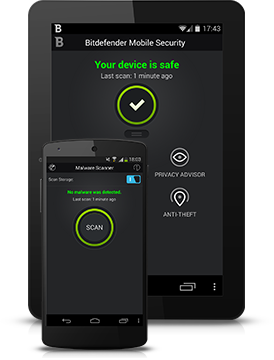 With Android security threats becoming more and more sophisticated each day, your devices need a cutting-edge app to safeguard your privacy.
With Android security threats becoming more and more sophisticated each day, your devices need a cutting-edge app to safeguard your privacy.Our recent Bitdefender Internet Security giveaway proved so popular we've decided to follow it up by offering BetaNews readers six months free of Bitdefender Mobile Security. The Android app has 100 percent detection rate according to independent labs AV-Test and comes with fortified anti-theft capabilities, enhanced privacy protection, a sleek new interface and battery-saving abilities.
Here’s a quick overview of its features:
- Privacy Advisor -- Shows you how installed apps use, and possibly abuse, your personal information.
- Anti-theft -- Allows you to send SMS commands, lock, track, and wipe your Android from any Internet-connected device.
- On-install and on-demand malware scanner -- Detects malware with 100 percent accuracy.
- Web Security -- Protects you in real-time when browsing websites using Chrome and Android’s default browsers
The award winning Bitdefender Mobile Security usually retails for $9.95 a year but BetaNews readers can use it absolutely free for six months. The only hitch is that you have just 24 hours to take advantage of our exclusive offer, so act fast!
To get your free six month version of Bitdefender Mobile Security just click here.
-

Overcome an alien invasion and get in shape at the same time with BattleSuit Runner Fitness
Publié: mars 25, 2014, 8:46pm CET par Wayne Williams
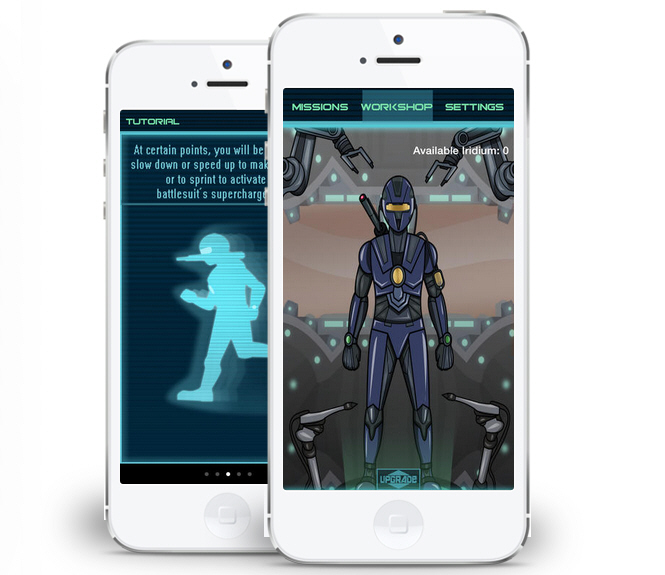
As much as I enjoy running, I often need help and motivation to get started, and keep going, and Zombies, Run! has been my savior. I’ve mentioned the fitness app several times in the past, but if you’re not familiar, it’s a sort of interactive radio play, in which episodic stories unfold in-between tracks from your playlist as you run, transforming a real-world jog into a journey through the zombie apocalypse.
Season 3 of Zombies, Run! is out next month, but I’ve found a new running app to keep me occupied until then. BattleSuit Runner Fitness is available for both Android and iOS and is quite similar in that the missions unfold in-between your running songs, but in this game you’re DeltaSuit, an exosuit-wearing commando battling against an alien invasion.
When I first encountered the app I’ll be honest, I didn’t have any great expectations. The presentation is lacking, and graphically it’s not very polished. Fortunately, there’s a free trial version so I figured I might as well give it a go anyway. I’m glad I did.
Although the graphics are poor, the audio quality is excellent, and very professional. The cast of characters are all very different and highly memorable.
Where it currently differs from Zombies, Run! is the length of the narration. There’s an awful lot of exposition at the start, and it takes ages before you hear the first song in your playlist. That’s not necessarily a bad thing, but the developers are considering slicing it up into smaller, more bite sized chunks.
Before each run (or walk, if you prefer) you can select your playlist, and set the approximate workout time. The minimum duration is 30 minutes, so no really quick jogs around the block.
During your run you’ll collect resources and engage in enemy battles which can lead to your battlesuit picking up damage. The battles take place over your playlist, and are actually pretty cool. Every so often, you’ll be prompted to speed up or slow down to achieve a task. You’ll also occasionally have the chance to activate your battlesuit’s "supercharge mode" by sprinting for a short while. You can adjust the supercharge difficulty level, depending on how easy or otherwise you find it.
The resources you collect along the way can be used to repair and upgrade your battlesuit in-between runs in the app’s workshop.
There are only nine missions in the paid version, but more are coming soon, and the developers are keen to keep improving the app. I’m only a short way into the story at the moment, but I’m really enjoying it so far.
Another thing the app has in its favor is the price -- the full version costs just $0.99.
-

Microsoft makes source code for MS-DOS and Word for Windows publicly available for the first time
Publié: mars 25, 2014, 8:00pm CET par Wayne Williams
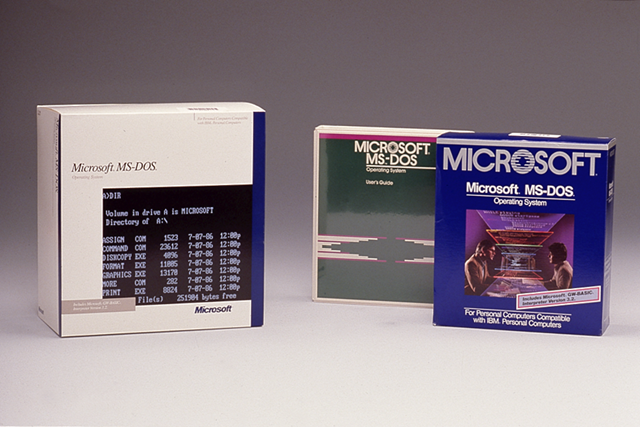
Microsoft has teamed up with the Computer History Museum (CHM) to make the original source code for two of its most historic programs publicly available for the first time. MS-DOS, the 1982 Disk Operating System for IBM-compatible personal computers, and Word for Windows, the 1990 Windows-based version of popular word processor.
“The museum has done an excellent job of curating some of the most significant historical software programs in computing history", Roy Levin, distinguished engineer and managing director, Microsoft Research says. “As part of this ongoing project, the museum will make available two of the most widely used software programs of the 1980’s, MS DOS 1.1 and 2.0 and Microsoft Word for Windows 1.1a, to help future generations of technologists better understand the roots of personal computing”.
In 1980, IBM approached a small company based in Seattle who had previously provided them with a BASIC language interpreter, and asked if they would be willing to work on an operating system project code-named "Chess". The Seattle firm, Microsoft, licensed an operating system from Seattle Computer Products and this later became the foundation for PC-DOS and MS-DOS.
Shortly after the release of its operating system, Microsoft released the first DOS-based, mouse operated version of Microsoft Word in 1983. At that time anyone who was using a word processor was likely using WordPerfect -- I certainly was -- and it wasn’t until 1989, that Word for Windows finally became a massive hit. "Within four years it was generating over half the revenue of the worldwide word processing market", Levin says.
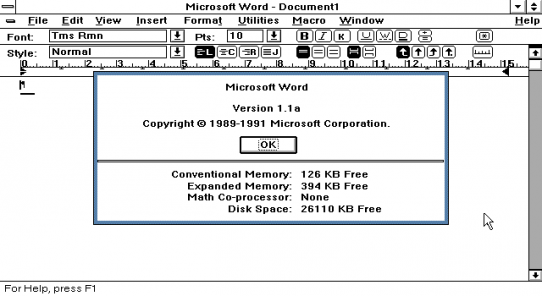
"MS-DOS and Word for Windows built the foundation for Microsoft’s success in the technology industry," says Levin. "By contributing these source codes to the Computer History Museum archives, Microsoft is making these historic systems from the early era of personal computing available to the community for historical and technical scholarship".
"We think preserving historic source code like these two programs is key to understanding how software has evolved from primitive roots to become a crucial part of our civilization," Len Shustek, CHM Chairman adds.
Other ground breaking historic source codes available in the CHM include APPLE II DOS, IBM APL, Apple Macpaint and QuickDraw, and Adobe Photoshop.

-

Watch HTC's new One unveiling live
Publié: mars 25, 2014, 2:52pm CET par Wayne Williams
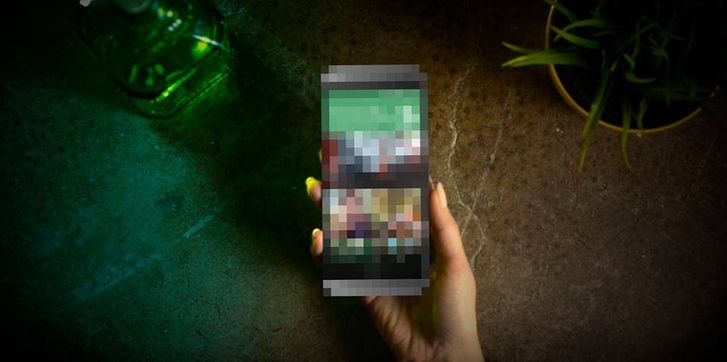
HTC is set to show off its new One smartphone at 11 AM ET in NYC today, although thanks to various leaks, we already know a fair bit about it, including that it will have a larger 5-inch display, be powered by a 2.3GHz Snapdragon processor, and sport a brushed stainless finish. The company also accidentally revealed that the smartphone will be available in a Google Play edition.
We’ll obviously post all of the details regarding the new device as soon as it’s officially revealed, but if you want to follow the announcement as it happens, HTC is kindly live streaming the full event.
To follow along, just go to HTC’s live streaming page here. If you arrive too early, you'll be faced with a countdown clock.
The original HTC One launched a year ago, to a decent amount of critical acclaim. Sadly, consumers weren't so impressed, and sales were lackluster, so it will be interesting to see if, or how, HTC can turn things around with this new model.
-

Best iOS apps this week
Publié: mars 21, 2014, 1:31pm CET par Wayne Williams
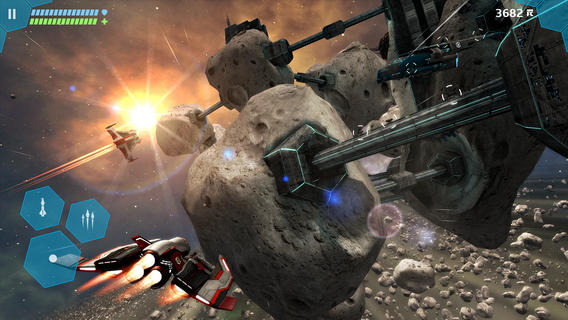
Eleventh in a series. Apple rolled out a cheaper 8GB version of its iPhone 5c this week (in selected territories) and also replaced the aging budget iPad 2 with the newer, 4th gen iPad with Retina Display. The replacement iPad, which is available everywhere, is priced the same as the iPad mini giving potential buyers an interesting purchasing dilemma.
Featured apps this week include one of the best looking games yet released for iOS, an app which claims to boost your fitness in just four minutes a day, one which will help you avoid people you don’t want to see, and a game which could help find a cure for cancer.
As always, if I miss an app that you think should definitely have been included, let me know in the comments below, or drop me an email.
Here is my selection for this week.
Paid App of the Week
Star Horizon ($3.99)
An excellent, and stunning looking on-rails space shooter powered by the Unity engine. You play as John, a private in the service of the Federation, and the game has you battling though the cosmos, upgrading your ship, rescuing friends and making important story decisions.
The game offers iOS 7 controller support, and is refreshingly free from in-app purchases.
If this looks like your sort of game I’d encourage you to buy it, you won’t be disappointed.
Free App of the Week
Quick 4 Minute Workout -- Tabata
Offers in-app purchases.
There are lots of 7 minute workout apps available in the App Store, but if you’re so busy you can’t devote that much time to getting fit (!), maybe one that nearly halves the workout time will be more to your liking. Quick 4 Minute Workout provides a super speedy full body workout based on the Tabata Protocol, a regimen reportedly used by Japanese Olympic athletes.
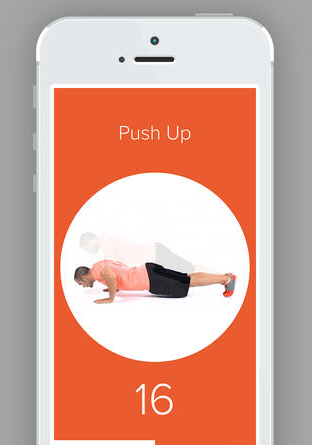
Other Apps
Games are often referred to as time wasters, but that’s not an accusation that can be leveled at Play to Cure. On the surface it’s a fun game in which you maneuver your ship through an asteroid filled space course, but it also cleverly gets players to analyze real genetic data, which could help find cures for cancer. It’s been developed by Cancer Research UK so its credentials are genuine.
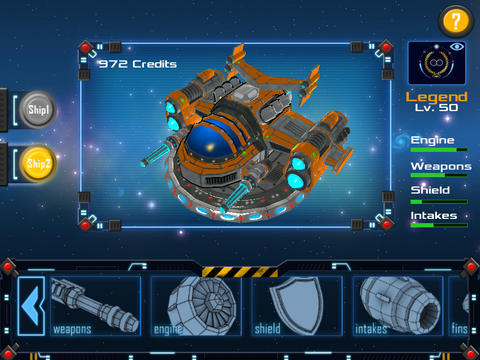
This new "antisocial network" app has been getting a lot of press coverage this week. It uses public location data from Instagram and Foursquare to find out where people you know (but don't want to see) are and warns you if they are nearby so you can take evasive action. Or as, the description on the website says: "Avoid exes, co-workers, that guy who likes to stop and chat -- anyone you'd rather not run into". It's a bit of a gimmick app to be honest, but it's free so there's no risk involved in giving it a try.
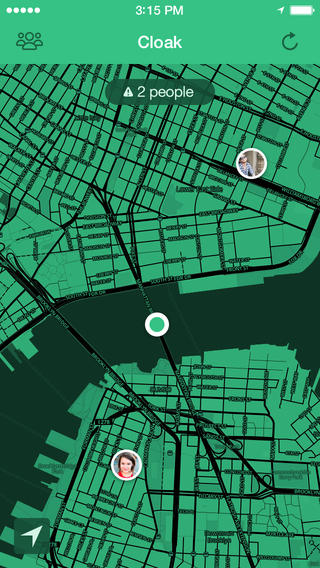
Doodle Jump has been one of the App Store’s top games for years, and to celebrate its fifth birthday, Lima Sky has released this special multiplayer mini-game. There’s no jumping this time around, instead Doodle the Doodler dons a jetpack and engages in a drag race through the treacherous canyons of Doodlandia. You can play against up to four friends.
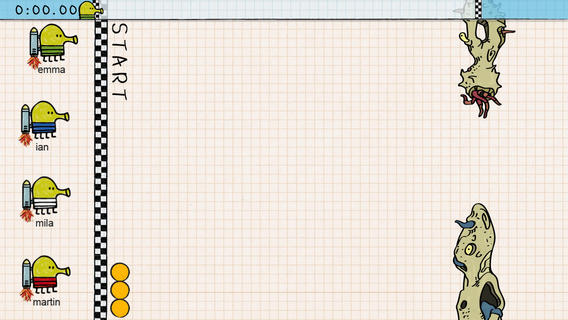
Apple’s App of the Week
Offers in-app purchases.
This week’s free game from Apple is an arcade racer from Namco Bandai. You can take on up to eight players, and race across 10 venues and 20 courses. There are over 100 racing competitions across six grand prix series.
The game usually retails for $2.99.

-

Google makes Gmail HTTPS-only in a bid to thwart NSA snoopers
Publié: mars 20, 2014, 7:00pm CET par Wayne Williams

Gmail has always supported HTTPS, and even made the communications protocol the default option in 2010. Today Google announces it will always use an encrypted HTTPS connection when you check or send email.
"Today's change means that no one can listen in on your messages as they go back and forth between you and Gmail’s servers -- no matter if you're using public Wi-Fi or logging in from your computer, phone or tablet", Nicolas Lidzborski, Gmail Security Engineering Lead says.
"In addition, every single email message you send or receive -- 100 percent of them -- is encrypted while moving internally. This ensures that your messages are safe not only when they move between you and Gmail's servers, but also as they move between Google's data centers -- something we made a top priority after last summer’s revelations", he adds.
In addition to this announcement, Lidzborski reports that in 2013, Gmail was available 99.978 percent of the time, resulting in an average of less than two hours of disruption per user for the entire year, which is an impressive achievement.
Image Credit:Nixx Photography/Shutterstock
-

ToneFone turns using your iPhone into a workout
Publié: mars 20, 2014, 6:37pm CET par Wayne Williams
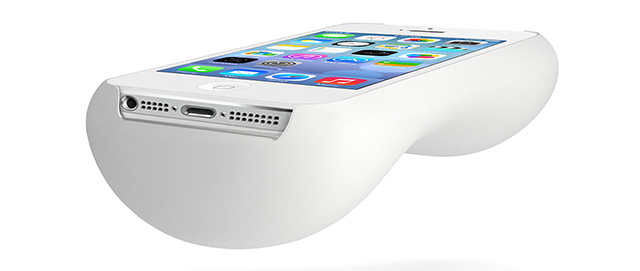
Apple’s iPhone has been getting lighter (and thinner) with each iteration, and while most of us view that as a good thing, UK based healthy living brand Desirablebody.co.uk has a different opinion, believing much, much heavier phones could help us get fitter.
"In the 80s carrying around a mobile phone meant carrying some serious weight -- and that could sometimes be a mini workout all by itself," Fitness Manager, James Finlayson states. So Desirablebody.co.uk has introduced a case that takes mobile phones back to their roots and transforms the iPhone into a dumbbell. No, seriously.
Available in 1kg and 1.5kg weights, the ToneFone is primarily constructed from steel or (in the case of the heavier version) lead, and then wrapped in a protective layer of rubber. This turns the simple act of answering your phone, or sending a text, into a muscle toning workout.
"We can all agree spending too much time on your phone’s not good for you. We wanted to change that" says Matt Morgan, MD of Desirablebody.co.uk. "What makes the ToneFone special is the ability it gives you to workout wherever you are. It’s that freedom, we think, that’s meant the ToneFone’s been a surprise hit".
The ToneFone was initially launched at the beginning of this month -- with just 50 produced as an experiment -- and it sold out in under 72 hours. Backorders are now being taken for delivery in April.
It’s available in white and priced at £22.90 ($38) for the lighter version and £25.40 ($42) for the heavier one. Gold and space grey models are due to launch in June this year.
Whenever I accidentally drop my phone I automatically try to cushion its fall with my foot, but somehow I don’t think that would be the smartest move if it was encased in a ToneFone.
What’s your view on this new case? Do you wish using your phone was more of a workout?

-

Bitrix24 takes on OneDrive, Google Drive, and Dropbox
Publié: mars 18, 2014, 7:24pm CET par Wayne Williams
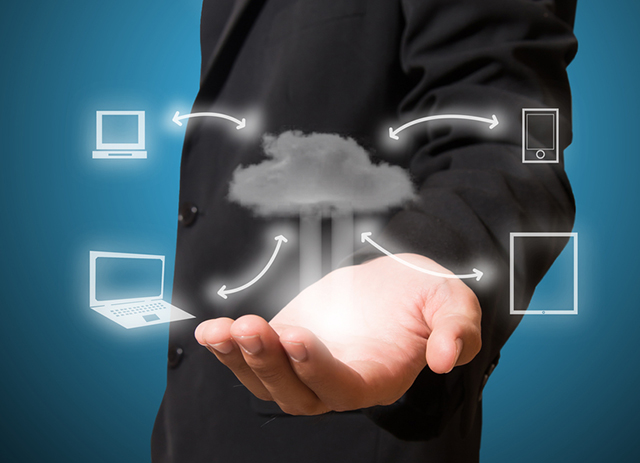
Bitrix24 has released a new desktop app for its online collaboration service, introducing the ability to synchronize and work with group and company files.
"We are currently the only online storage and file sharing service that has a free plan with group and company drives -- Box, OneDrive, Dropbox and Google Drive all charge for the privilege or don’t offer the option at all. Nor do we restrict our users concerning what tools they use for document editing -- they can use MS Office installed on their PC, or MS Office Online, or Google Docs. Obviously, that alone is not enough to compete with these giants, so we decided to add communication and collaboration tools right inside the app as well," says Dmitry Valyanov, President of Bitrix, Inc.
As well as allowing sharing, editing and collaborating on documents, the desktop app lets colleagues communicate via instant messaging, participate in group chat, make telephone calls, and hold video conferences.
"A lot of companies use Dropbox for file sharing, Google Docs for document editing, Skype for calling and WhatsApp for instant messaging. This is inconvenient, not to mention expensive. The fact that the Bitrix24 app does it all and more, and is free for up to 12 users, appeals to a lot of small businesses, especially because Bitrix24 uses encryption and can be installed either on your own server or used in the cloud," adds Mr. Valyanov.
The Bitrix24 March 2014 update also includes a number of other service enhancements, including call history and bill itemization for telephony, the ability to define outbound phone numbers, a floating window for video calls in the desktop app, and a duplicates search feature in the CRM. The mobile app has been updated as well.
Bitrix24 apps are available for PC, Mac, iOS and Android.
Photo Credit: Sakonboon Sansri/Shutterstock
-

Icon History shows which sites you're addicted to
Publié: mars 18, 2014, 1:30pm CET par Wayne Williams
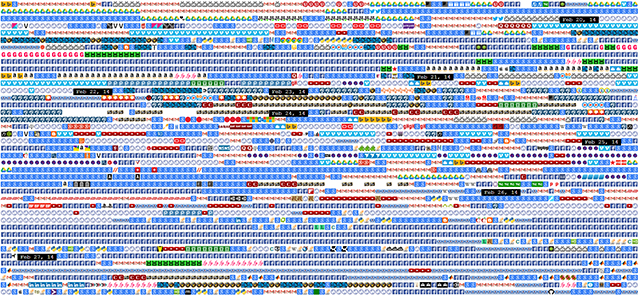
We all have multiple favorite websites we visit on a regular basis -- Google, Facebook, BetaNews, and so on. But if you've ever wondered how often, and when, you visit them, a new Chrome browser extension can show you.
Install Iconic History and it will scan your browser history, create a favicon for each URL you visited, and then layout the favicons in a sequence based on access time. You can scroll through time (Chrome stores up to four months’ worth of history) and hovering over a favicon will tell you the site name, and access time. Clicking on a favicon will open that site in a new tab.
According to Shan Huang, the add-on’s creator, provided you don’t clear your browser history on a regular basis, you can expect to see around 20,000 favicons displayed, and might be able to identify certain "life events" -- when you spent longer than average on a particular site.
The add-on also provides filters so you can narrow the results by site and/or time. So if you want to know when you spend the most time browsing here, or what sites you most often visit late at night, you can easily find out.
You can install Iconic History here.
-

Apple introduces 8GB iPhone 5c, brings iPad 4 back to life
Publié: mars 18, 2014, 10:00am CET par Wayne Williams

It’s fair to say the iPhone 5c hasn’t been a major success for Apple so far. Rumors prior to its launch suggested it would be a cheap iPhone, and while it is more affordable than the flagship 5s, it certainly isn’t "cheap". Those low cost expectations coupled with the actual price have affected the iPhone 5c’s sales -- with many buyers preferring to spend a little extra to get the 5s.
That might change soon though, as Apple has rolled out an 8GB variant of the iPhone 5c, making it available across Europe and China from today.
UK purchasers can pick up an unlocked model from the Apple Store for £429 ($713), £40 ($66) cheaper than the 16GB model. If you’d rather not pay a chunk upfront, you can get it from UK operator O2 for free on a multi-year contract. The 8GB phone is also available in China, but not, as of yet, in the US Apple store.
That’s not the only big Apple news today. The iPad 2, which was offered as a more affordable alternative to the flagship iPad Air, is being retired, and in its place comes the fourth generation iPad, complete with Retina display and Lightning connector.
Interestingly, the "new" iPad is priced from $399, which is the same as the iPad mini, making choosing which model to go for that bit trickier. The fourth gen iPad is available across all of the world’s Apple stores now.
Will you be buying the 8GB iPhone 5c or iPad with Retina Display?
-

Microsoft confirms Surface 2 with AT&T LTE -- goes on sale tomorrow
Publié: mars 17, 2014, 4:34pm CET par Wayne Williams
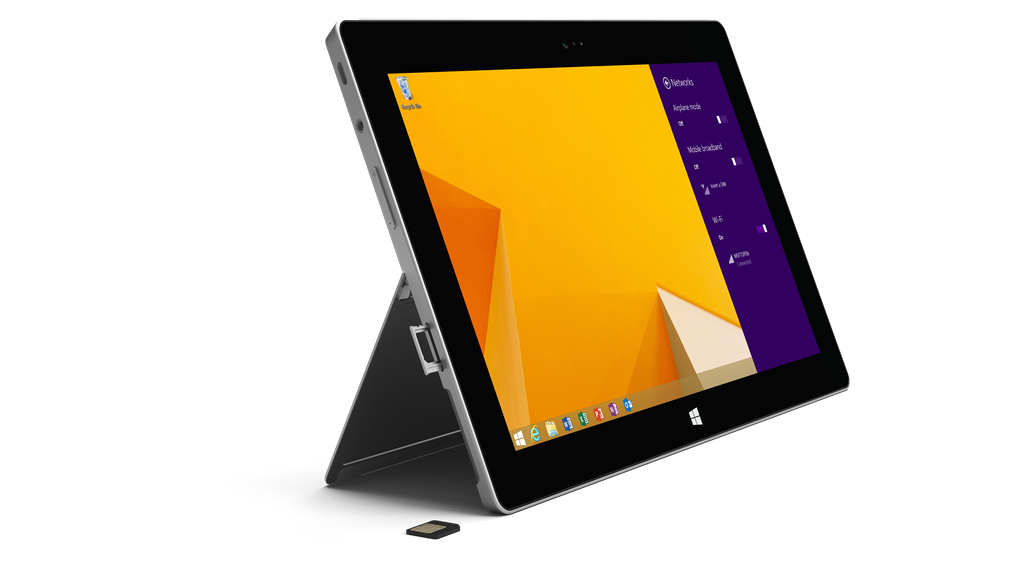
We knew it was coming, but today Microsoft confirms that it is introducing a 64GB mobile broadband-ready version of Surface 2, and you won’t have to wait very long to get your hands on it either, as it will be available from tomorrow, March 18.
"In launching this new version of Surface 2, we’re adding the power and reach of AT&T’s 4G LTE network to an already fantastic device", Panos Panay, Corporate Vice President, Microsoft Surface, states. The new slate will be available in the US at Microsoft retail stores, www.microsoftstore.com and at BestBuy.
As for the price, Panay says it will set you back $679, which makes it a pretty expensive purchase, especially as you’ll likely need to factor in extras like a Touch or Type cover. The lack of carrier diversity won’t please many would-be purchasers either, but it’s a start.
Are you interested in buying a LTE version of Surface 2, or do you -- like a lot of us in the BetaNews newsroom -- find the idea of a LTE tablet pointless when you can tether using a smartphone?
-

Fixya reveals top problems affecting Xbox One, PlayStation 4 and Wii U consoles
Publié: mars 14, 2014, 5:00pm CET par Wayne Williams
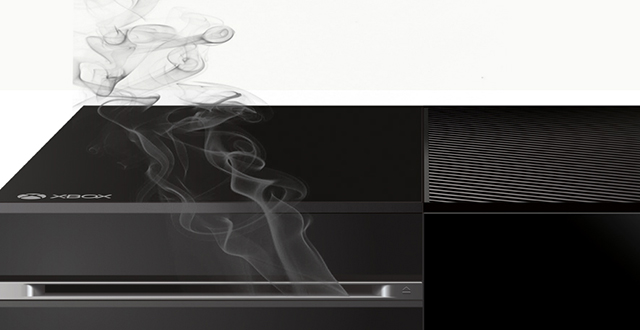
Games consoles, like any complicated piece of hardware, can go wrong in myriad ways, and usually at the most inappropriate moment -- when your wife’s out for the evening and you’ve got a freshly purchased copy of Titanfall, and a group of trigger-happy friends standing by, for example.
Popular product Q&A service Fixya has sifted through over 40,000 troubleshooting requests relating to the Xbox One, PlayStation 4, and Wii U and put together a report detailing the top five commonly encountered problems for each of the next-gen consoles. It doesn’t break down the number of problems per console (thereby neatly sidestepping fanboy accusations of one being shoddier than the other) but does still make for interesting reading.
Microsoft Xbox One
Kinect issues are responsible for nearly a third of Xbox One woes, with Fixya mentioning sensors not responding, motion sensor technology malfunctioning, and the device failing to recognize commands. The console turning itself off and/or failing to boot came a close second. The top five issues Fixya found with the console were:
- Kinect issues -- 30 percent
- The console turning off -- 25 percent
- Audio/sound problems -- 15 percent
- Disc drive issues -- 10 percent
- Other -- 20 percent
Sony PlayStation 4
PlayStation 4 owners are mostly affected by "blue light of death" issues where the normally white console light pulses blue, and the PS4 refuses to boot or output video. The breakdown of problems for the PS4 includes:
- The console turning off -- 35 percent
- No audio/video -- 25 percent
- Freezing -- 20 percent
- Disc drive issues -- 10 percent
- Other -- 10 percent
Nintendo Wii U
A large number of Wii U owners are still having problems with the console freezing, along with malfunctioning gamepad issues, even though Nintendo claims to have (mostly) fixed the issues. There are other problems as well:
- Freezing -- 35 percent
- Gamepad -- 30 percent
- Internet Connection -- 15 percent
- Audio/Video -- 10 percent
- Other -- 10 percent
Usefully, coming from Fixya, the report doesn’t just list the issues, it suggests remedies for (some of) them too.
"Buying a video game console is a big investment, and can cost up to five hundred bucks for the console alone -- and that’s before games even enter the equation", says Fixya CEO and founder, Yaniv Bensadon. "With promises of 'the future' from each of these manufacturers, we wanted to give customers an insider look into the most common problems with each device, along with a few fixes -- so these consumers can head into 'the future' knowledgeable and with confidence".
You can view the full Fixya Game Console Report and list of possible fixes for the mentioned problems here.
-

Best iOS apps this week
Publié: mars 14, 2014, 12:46pm CET par Wayne Williams
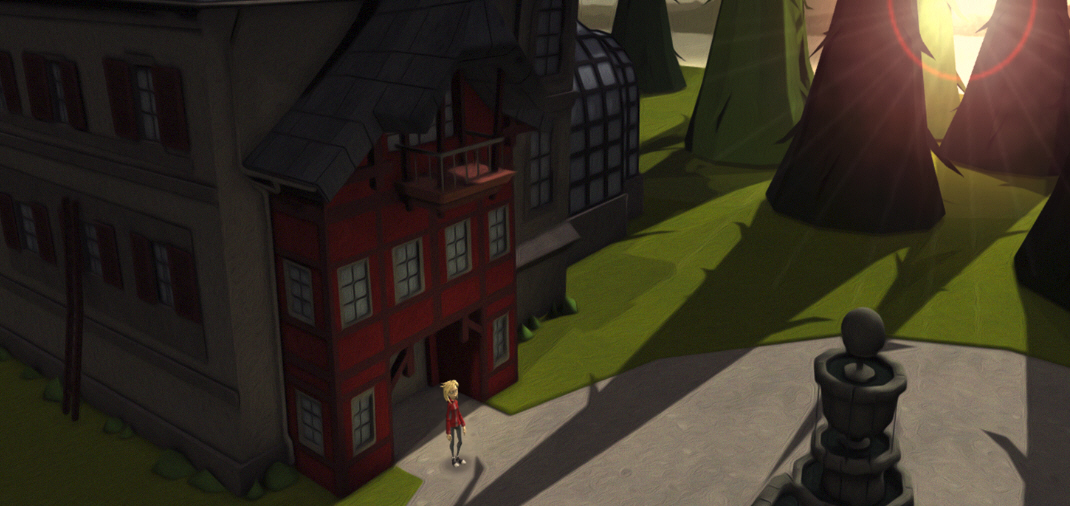
Tenth in a series. A big week for Apple as it released the long-awaited update for its mobile operating system. iOS 7.1 adds support for CarPlay, enhancements to Siri, iTunes Radio, Calendar, and Accessibility, and a new HDR camera setting for iPhone 5s. The big news for owners of iPhone 4 is iOS 7.1 runs far less sluggishly on the older hardware.
Of the new and updated apps that have arrived in the store this week, highlights for me include a free adventure game from two ex-LucasArts designers, an app which transforms everyday snaps into works of art, one that stops you forgetting...er… something… and a kitchen app that that will let you find, and conjure up, delicious culinary delights.
Oh, and Candy Crush Saga has an update this week, with new levels, and a minor makeover, but we won’t mention that.
As always, if I miss an app that you think should definitely have been included, let me know in the comments below, or drop me an email.
Here is my selection for this week.
Paid App of the Week
Brushstroke ($2.99)
Brushstroke turns your digital photos into works of art. The app offers a wide choice of painting styles, and you can load images from your camera roll or take a snap using your device’s camera and transform it instantly. There are a variety of canvases and surfaces to choose from and you can tweak things until you’re happy with the result.
You can sign your work, share it on Instagram, Twitter, and Facebook and output it as a canvas print through CanvasPop.
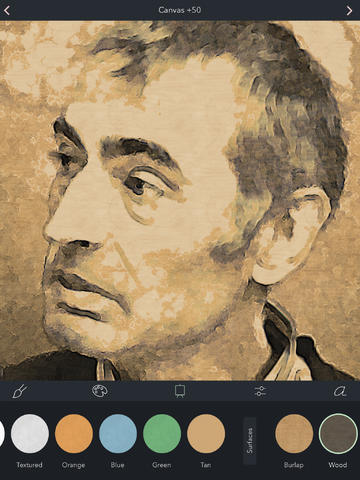
Free App of the Week
I’m a sucker for point and click adventures, always have been, and my iPad is full of them. Another chunk of disk space was consumed this week with the arrival of Perils of Man, a beautifully designed and very polished 3D adventure created by two veteran developers who worked on LucasArts classics such as The Curse of Monkey Island, Full Throttle, and The Dig.
The star of the game is teenager Ana Eberlng on a quest to solve the mystery of her scientist father’s disappearance ten years ago. There’s a "Risk Atlas" that can crack the code of destiny, a plot that spans 150 years, and over 30 locations and 20 characters.
A great free adventure with no in-app purchases. It’s sponsored by insurance company Swiss Re, but there are no adverts to worry about. Chapter 1 is about 10 percent of the full game.
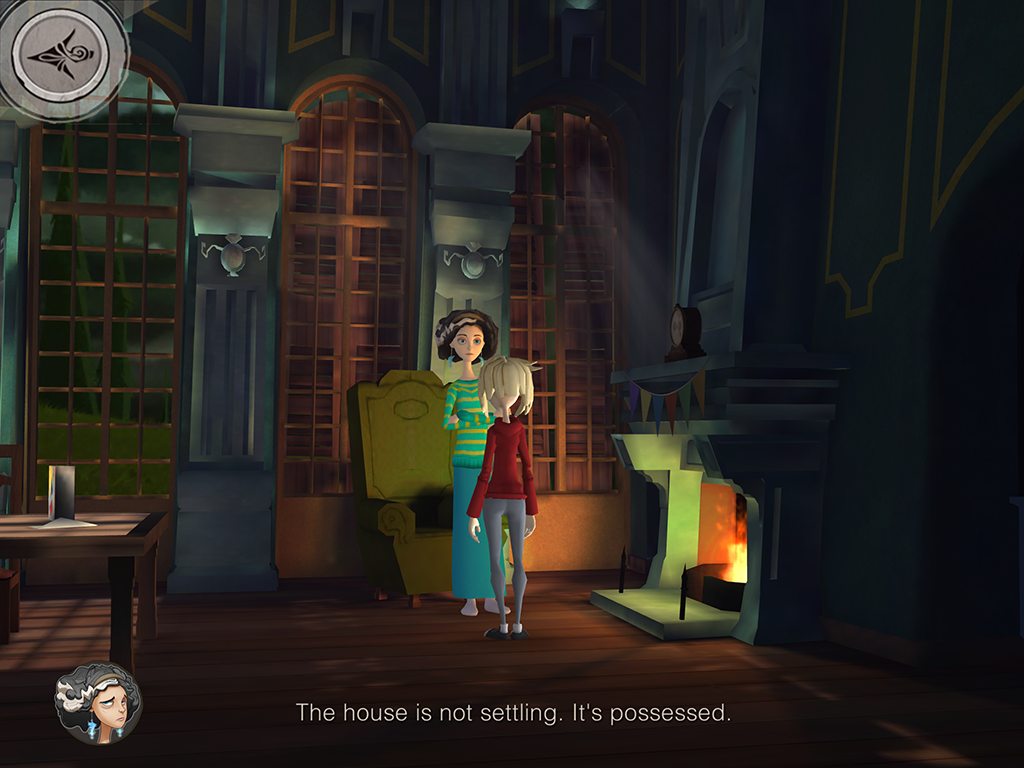
Other Apps
Expires ($0.99)
There are lots of things you probably have to try and remember -- when that work deadline is, when your driver’s license needs renewing, when your anniversary is, perhaps. Expire is designed to help you remember all of the important things by providing a countdown next to each event, so you can see at a glance how long is left to go. It’s very easy to add events, and you can set an alarm for each one.
If you like your fun games short and brutally difficult (Flappy Bird has a lot to answer for!), you might want to pit your skills against this retro-style arcade game. The aim is to avoid the donkeys in the road by changing or jumping lanes. You can post gameplay videos to Facebook, Twitter and YouTube. Although they are likely to be very short videos (until you master lane jumping at least).

I've found the iPad makes for a great recipe book, and digital kitchen platform Yummly clearly agrees as it’s super-sized its iPhone app, rebuilding it to make better use of the extra screen space. There’s a lean-back mode for personal recipe inspiration and a lean-forward mode for finding the perfect recipe for dinner tonight.
Yummly features over one million recipes from the most popular sites and blogs, and lets you save and organize your favorites in a digital recipe box.
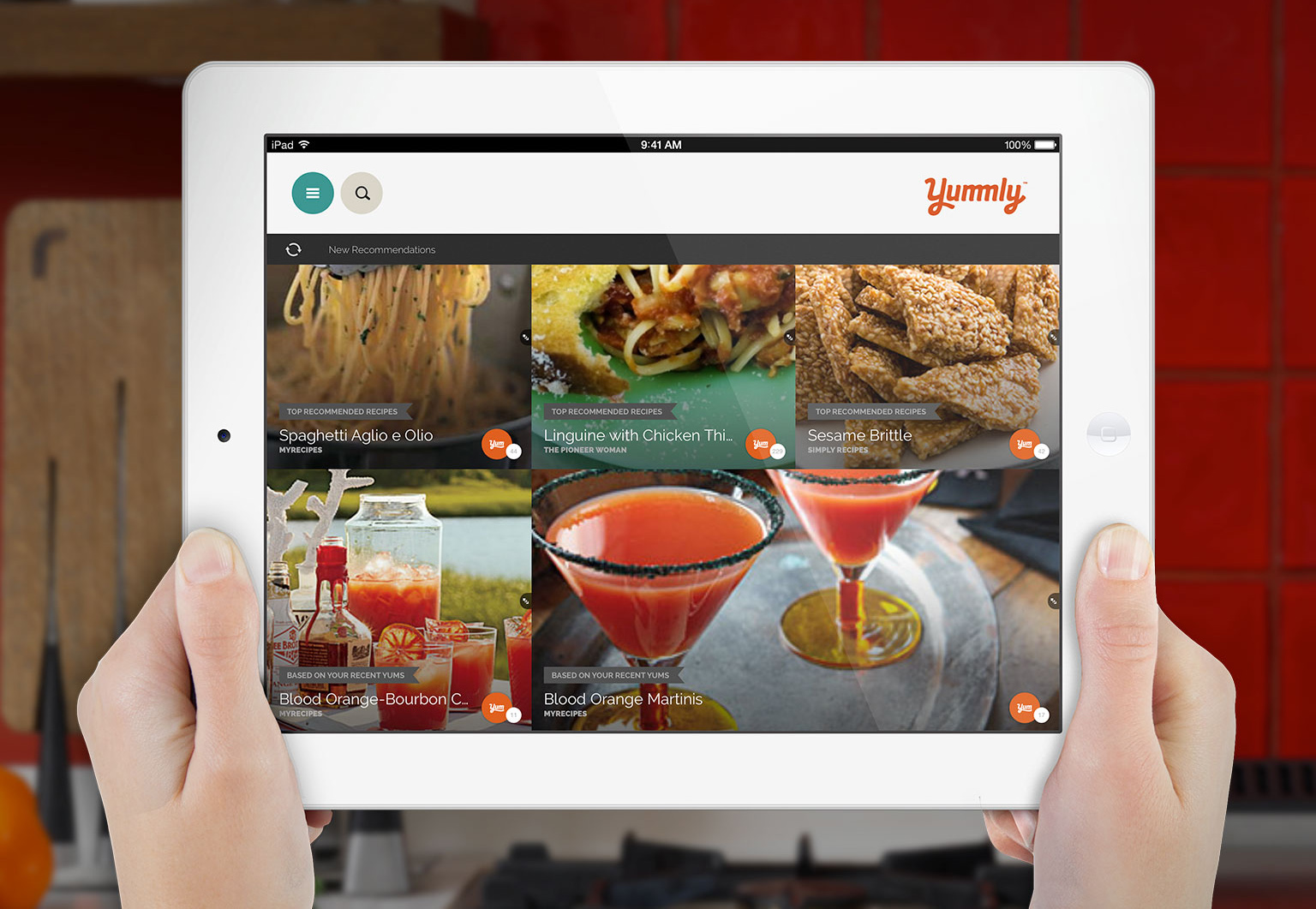
Apple’s App of the Week
Offers in-app purchases.
This week’s free app courtesy of Apple is a beautiful game with stylish noire art. Darkness is coming and only Lum, the face of light, can defeat the Darklings who have stolen the stars. The game is controlled entirely by gestures -- you draw shapes on creatures to possess and kill them. There are several different environments to battle through including the Dark Forest, Caverns, and Floating Islands, and Lum can be customized with various looks.
In-app purchases let you buy stars.

-

BetaNews Exclusive: Get 6 months free of the 'Best Antivirus of 2014'
Publié: mars 14, 2014, 12:48am CET par Wayne Williams
 Last week we gave readers the chance to download and use Bitdefender Internet Security free for six months. This is the full version that usually retails for $69.95, not some featured limited "special" edition. Understandably the offer proved to be massively popular, so the good news for anyone who missed out is we're doing it all over again!
Last week we gave readers the chance to download and use Bitdefender Internet Security free for six months. This is the full version that usually retails for $69.95, not some featured limited "special" edition. Understandably the offer proved to be massively popular, so the good news for anyone who missed out is we're doing it all over again!Bitdefender Internet Security frequently wins awards and plaudits, and was recently ranked #1 in protection and #1 in performance in the home user category by independent testing lab AV-Test, earning perfect scores for protecting users against malware and zero-day attacks and maintaining the lowest possible impact on the system.
"After another year of testing, Bitdefender still proves that it is better than other leading antivirus at leaving your device spotless," AV-Test CEO Andreas Marx said. "Under rigorous testing, Bitdefender proved more dead-accurate and silent than ever -- all this with the smallest possible impact on your PC performance".
BetaNews readers can use the award winning Bitdefender Internet Security software absolutely free for 180 days. The only hitch is that you have just 24 hours to take advantage of our exclusive offer, so act fast!
Bitdefender Internet Security -- 'Best Antivirus of 2014'
- Absolutely FREE for 180 Days!
- Superior security for all your data.
- Extremely fast. Non-intrusive.
- Bitdefender Photon boosts scanning time, eliminates slowdowns and accelerates scanning speed by understanding and adapting to your PC.
- Guards your online transactions. Protects your digital identity.
- Reveals your kids’ online activities. Restricts them when necessary.
- Protects your Internet connection with its firewall.
To get your free 180 day version of Bitdefender Internet Security just click here. Please note, promotional licenses need to be activated within 30 days.
-

The BEST Start button and menu choices for Windows 8.1
Publié: mars 13, 2014, 5:29pm CET par Wayne Williams
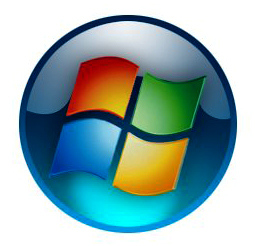 Whatever your reasons for switching to Windows 8.1 -- be it finally upgrading from XP, or the arrival of a new PC at home or work -- you’ll find "New Windows" a slightly alien place at first. You can action various changes to make it more like the OS you’re used to (boot to desktop -- soon to be the default -- and switching to the All Apps view are great first moves), but if you want a proper Start button and menu, you’ll need third-party help. Fortunately there are plenty of great choices available, including some excellent free programs like Classic Shell and IObit StartMenu 8.
Whatever your reasons for switching to Windows 8.1 -- be it finally upgrading from XP, or the arrival of a new PC at home or work -- you’ll find "New Windows" a slightly alien place at first. You can action various changes to make it more like the OS you’re used to (boot to desktop -- soon to be the default -- and switching to the All Apps view are great first moves), but if you want a proper Start button and menu, you’ll need third-party help. Fortunately there are plenty of great choices available, including some excellent free programs like Classic Shell and IObit StartMenu 8.Seasoned Windows 8.x users might sneer at you for "going back to the old ways", but there’s no question that if you use a keyboard and mouse and have limited interest in the Modern UI, a "real" Start button and menu can do wonders for your productivity. Here are our top 14 recommendations -- free and paid.
Classic Shell (FREE)
Last updated in January to make the program more secure, and give users the ability to control settings through group policies, this fully Windows 8.1 compatible Start button and menu is the one recommended by most users, and rightly so. It offers a choice of three different menu styles -- Classic, Two Columns and Windows 7 -- which can be skinned to suit your tastes.
It is packed with options, including a dedicated shutdown button, the ability to pin programs directly from Explorer and an enhanced Windows Search function. In addition to the classic Start Menu there's a Classic Explorer and Classic IE, although you can choose which elements you want during installation.
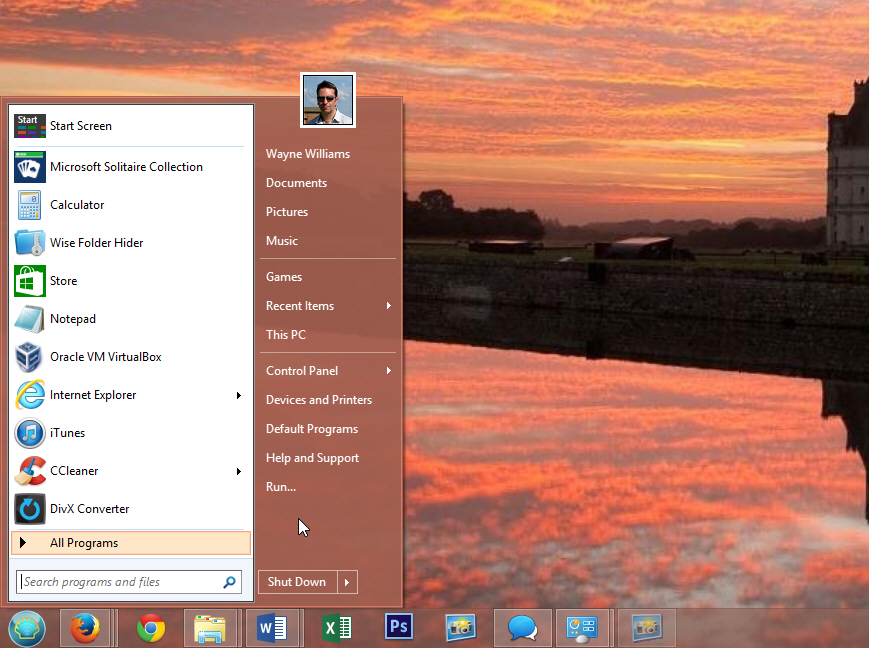
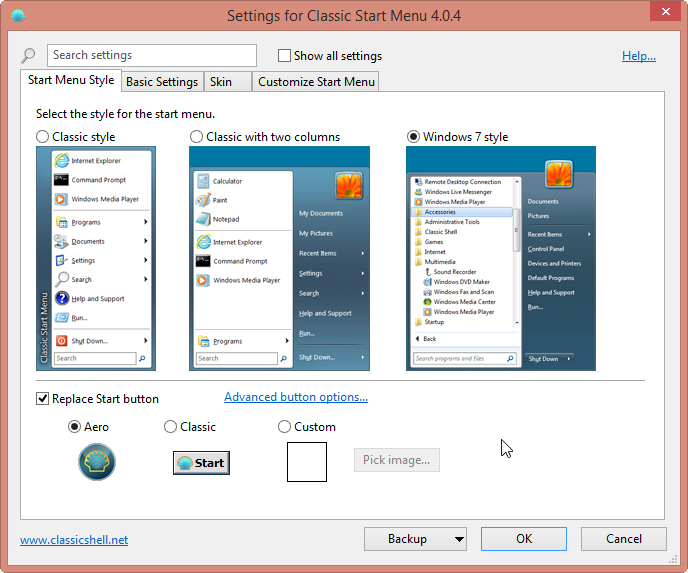
IObit Start Menu 8 (FREE)
This free program offers a choice of Start menus. You can opt for the usual Windows 7 look, or go for the Windows 8 design which places the Start (or Apps) screen inside a window on the desktop. You can also change the style settings to make the latter view seem less odd. It offers a selection of different Start button choices too. As well as the standard Windows 7 and Windows 8.1 button designs, there are some weirder options including a love heart, an acorn, and a coffee cup.
The menu is fully customizable, as is the user interface.
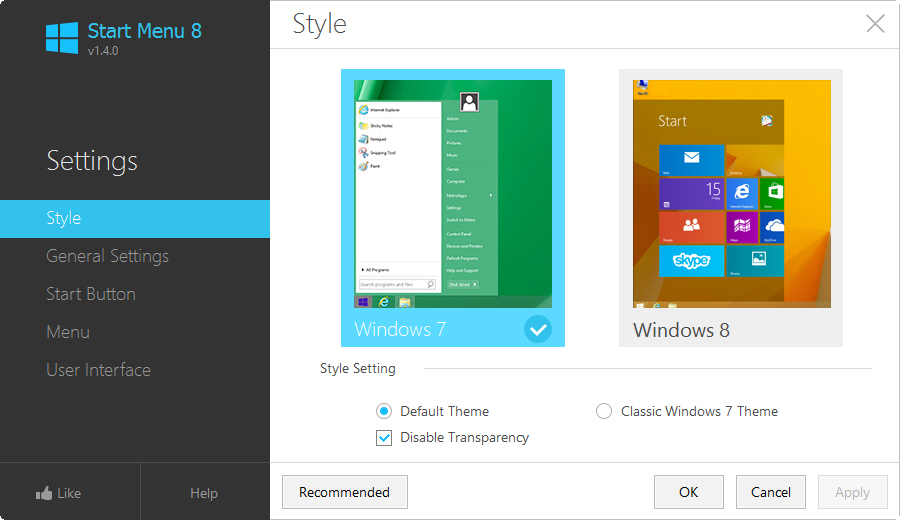
Start8 ($4.99 -- trial available)
Stardock’s Start menu isn’t free, but it’s very affordable at just $4.99 and there’s a 30-day trial available so you can try before you buy. You get a Windows 7 style Start menu with Windows 8 enhancements that will let you pin desktop and Modern UI apps, and it supports Jump Lists too. The menu automatically matches the color of the taskbar, and the Start button is fully skinnable. Like IObit's Start Menu 8 it can display the Windows 8.x Start screen in a pop-up window from the desktop.
You can also optionally disable all of the Windows 8 desktop "hot spots".
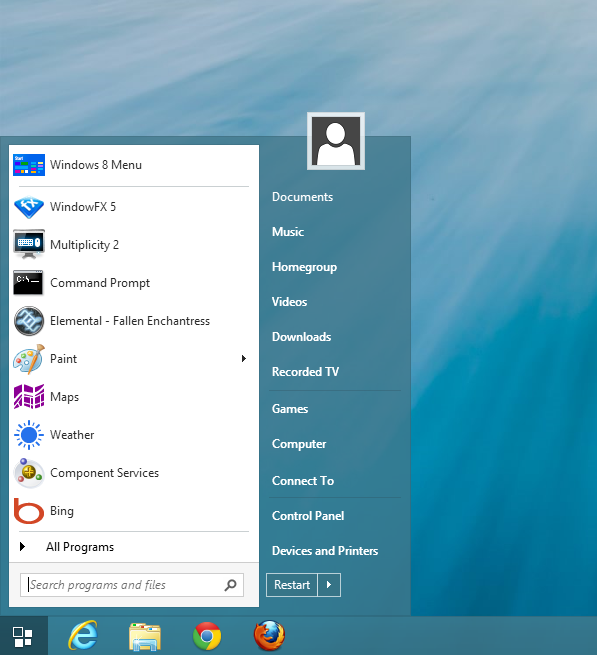
StartIsBack ($2.99 -- trial available)
This is an authentic Windows 7 style Start button and menu. It costs just $2.99 (for use on one PC) and there is a 30-day trial available. When the trial expires it will continue to run but in a limited mode, and with the addition of nagging requests to upgrade. There are separate versions for Windows 8 and 8.1, but your license key will work with either.
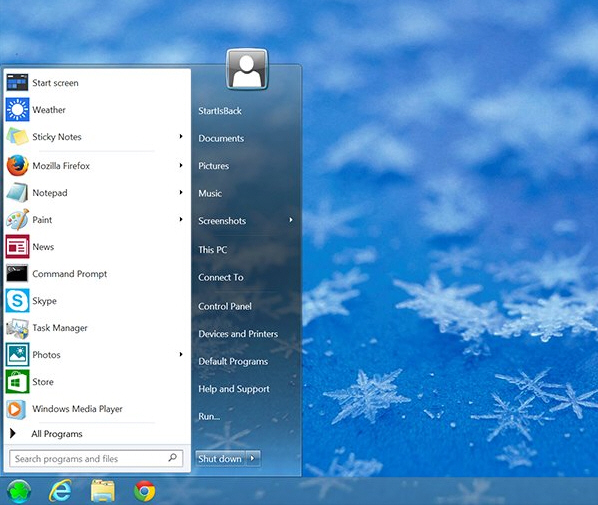
8StartButton (FREE)
Totalidea offers free and paid versions of its Start button. The free edition is (naturally enough), lacking in features compared to the paid edition, but will suffice for most users' needs. 8StartButton doesn’t seek to revisit the past by perfectly replicating the Windows 7 Start button and menu, but instead offers a choice of new designs. You can customize the Start button with your own images, and choose what it should display when clicked -- the Start menu, Start screen or a cool, and very different radial menu.
A customizable menu offers tabs that let you quickly switch between Start menu, Start tiles and Recent Documents, and there’s a "Search for programs and documents" box. The paid edition costs $17.99 (including tax) but there’s an offer code (8BND14) which will currently save you 10 percent when applied.

Start Menu Reviver (FREE)
If you don’t hate the look of the Modern UI, just the lack of traditional Start menu, this free program might well appeal. Instead of a Windows 7 style menu, it presents you with a tiled touchscreen-friendly version you can use to launch both desktop and Windows Store apps. You can turn websites and even documents into tiles.
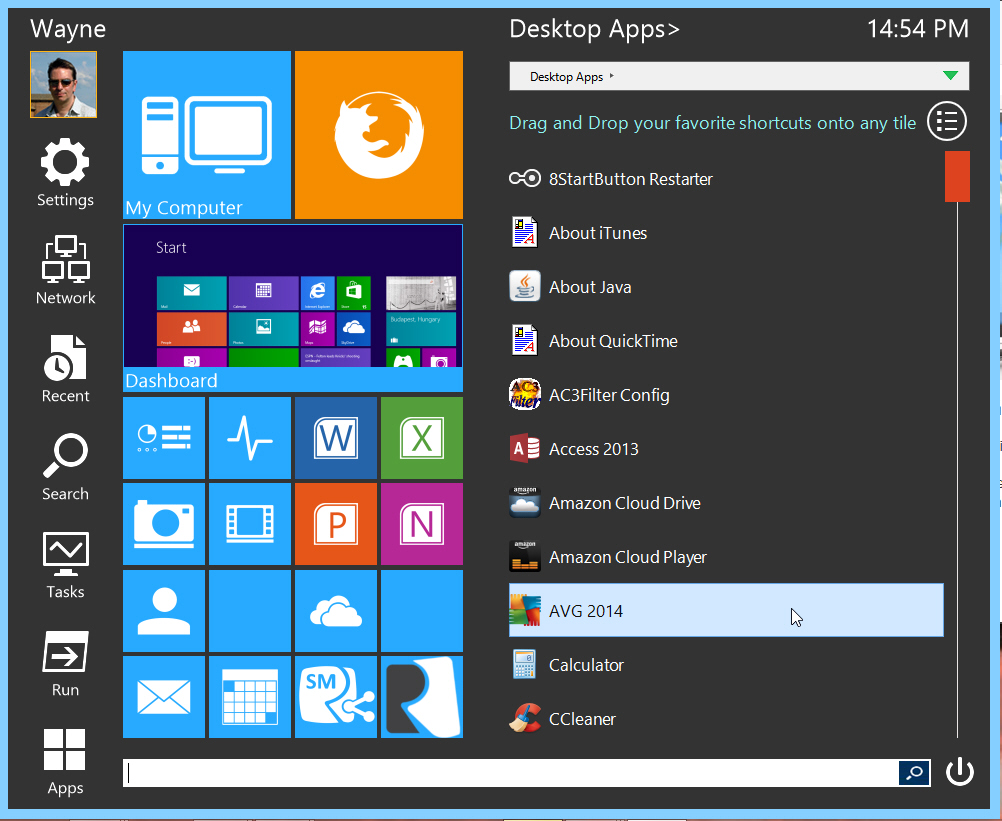
ViStart (FREE)
A free Start menu from the developer who has previously created alternative menus for Windows Vista and Windows 7. It comes with three Start menus and four Start buttons pre installed, and a skin manager and control panel you can use to configure settings.
Start Menu X (FREE)
Fully compatible with Windows 8.1 this Start menu comes in free and professional editions. The latter costs $9.99 and adds extra features, such as one-click launch, and tabs.
StartW8 (FREE)
If you want a straightforward, no frills Start menu, then this should serve your needs perfectly. It’s a convincing facsimile of the Windows 7 menu, and fully compatible with Windows 8.1. The program is free, although a donation is appreciated.
Classic Start 8 (FREE)
Adds a traditional Windows 7 style menu to the tiled OS and gives users quick access to the search box, control panel, documents, and all programs.
Pokki for Windows 8 (FREE)
Although this is a Start button and menu, it’s not a Windows 7 copy. The program gives you a mobile like app experience with tons of free apps on offer.
Handy Start Menu (FREE)
A rather basic Start menu, but it does the job and lets you launch programs without having to leave the desktop. Applications are automatically sorted by groups.
StartForDesktop (FREE)
Offers a Start menu and “Classic” Start menu, and the ability to pin desktop programs, and launch Modern apps.
Power8 (FREE)
Not the most polished looking of Start menus, it lets you access frequently used applications and pin items, and doesn’t require installation, so you can try it out without risk and even use the Modern UI alongside it.
-

Apple releases iOS 7.1, fixes bugs, adds extra features
Publié: mars 10, 2014, 6:54pm CET par Wayne Williams
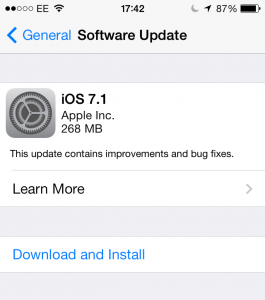 The first big update to Apple’s mobile operating system is currently rolling out to users now. The update includes various improvements and bug fixes.
The first big update to Apple’s mobile operating system is currently rolling out to users now. The update includes various improvements and bug fixes.Among the additions are support for CarPlay, and enhancements to Siri, iTunes Radio, Calendar, and Accessibility. There’s also a new camera setting which can automatically enable HDR on iPhone 5s.
To make use of CarPlay you’ll need to buy a compatible vehicle, so few users will get much out of that inclusion for a while. With the Siri updates you can now manually control when the voice activated assistant listens to you. Hold down the home button, speak, and release it when you’ve finished -- just like using a walkie-talkie. There are also now more natural sounding voices for UK English, Australian English, Mandarin Chinese, and Japanese.
The iTunes Radio improvements include adding a search field above Featured Stations, and you can buy albums direct from Now Playing. You can also subscribe to iTunes Match directly from your device to listen to the service ad-free.
Calendar tweaks include the ability to display events in month view, and country-specific holidays have been added for numerous locations.
Other changes include iCloud Keychain support for additional countries, improved TouchID fingerprint recognition, better iPhone 4 performance, and interface refinements.
The update will appear automatically, ready for installing, or you can manually check for it by going to General> Software Update.
-

Best iOS apps this week
Publié: mars 7, 2014, 1:15pm CET par Wayne Williams
 Ninth in a series. This week Google updated its Gmail app, adding background refresh, so it can now fetch new mail even when it’s not open. This is a great addition, and stops you having to manually refresh to check for new messages. Google also added simplified sign-in. Log in to any Google app -- Gmail, Maps, Google+ or Chrome, for example -- and your account details will be used to log you in to all other Google apps automatically.
Ninth in a series. This week Google updated its Gmail app, adding background refresh, so it can now fetch new mail even when it’s not open. This is a great addition, and stops you having to manually refresh to check for new messages. Google also added simplified sign-in. Log in to any Google app -- Gmail, Maps, Google+ or Chrome, for example -- and your account details will be used to log you in to all other Google apps automatically.Of the new apps that have arrived in the store this week, there's a great, easy to use file transfer tool, an app that will help you monitor and (maybe) manage your caffeine consumption, a social local discovery tool, a dance game, and a cartoon racer that will let you go head to head against Top Gear's The Stig.
As always, if I miss an app that you think should have been included, let me know in the comments below, or drop me an email.
Here is my selection for this week.
Paid App of the Week
Block Fortress: War ($1.99)
Offers in-app purchases.
Set in the Blockverse, a blocky dimension that’s home to five warring races, this game meshes block building with real time strategy. You can play as one of the races (each of which has its own soldiers, heroes, and blocks) and customize your army and build up defenses to keep your opponents at bay.
Free App of the Week
Findery: social local discovery
Every place has a story and the aim of Findery is to reveal that story to the world. Users tag notes and/or photos on a map, for other users to discover. It has been in testing for two years, so already has a reasonable amount of notes in place. Of course unless you live in or near a major city there’s still a good chance you won’t encounter anything on your doorstep, but you should find some places within driving distance.
The map covers the entire planet so you can view notes from around the world, view recent additions and any activity on notes you created. "Bumping" runs in the background and will alert you when you’re in the vicinity of a note.
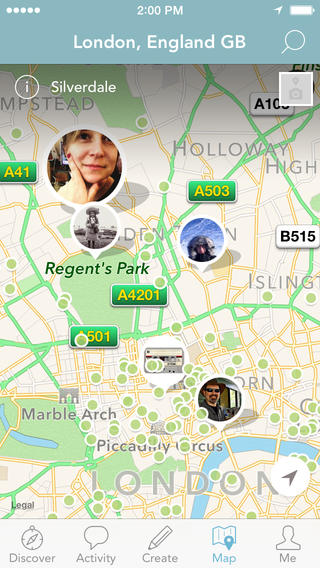
Other Apps
Offers in-app purchases.
The Stig is the "tame racing car driver" who features in the BBC’s Top Gear motoring show. In this game, you race against the mysterious helmeted one in various iconic vehicles from the program, and across different locations, dodging traffic, and jumping caravans.

Worried you drink too much coffee? I know I do. This app, from Jawbone Labs, lets you find out more about your body’s reaction to caffeine. Use it to keep track of your caffeine consumption (not just coffee) and see how it can affect your sleep. The app will tell you how affected by caffeine you currently are (OK, Edgy, Wired, etc.), and suggest the time when you will be ready for sleep. 5am in my case.
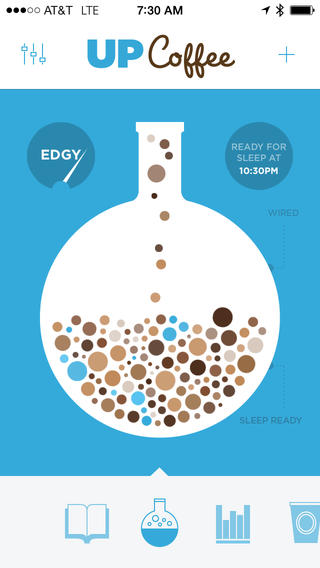
WeTransfer’s new app has been designed specifically to let users send high-res photos and videos. You can send up to 10GB of images and videos from your phone at a time, and transfers can be made over Wi-Fi, and cellular (3G and 4G). You can pause or cancel a transfer at any time.
The app connects to your address book to make it easier to send files to contacts.
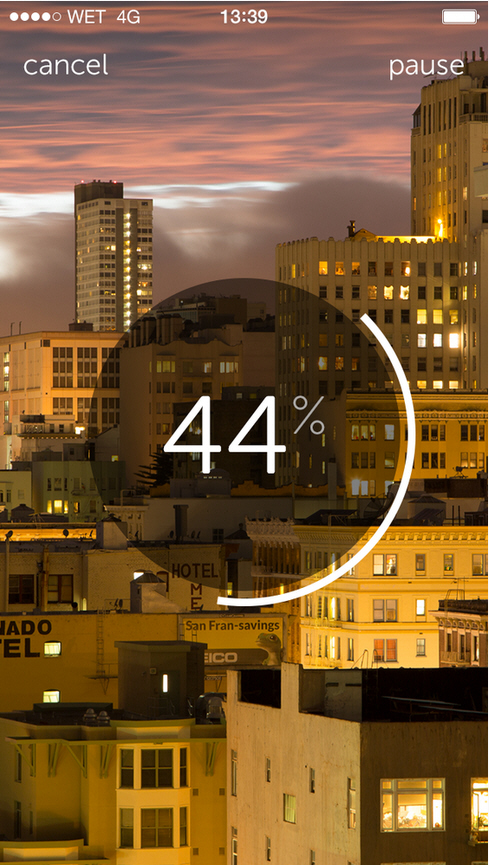
Apple’s App of the Week
Offers in-app purchases.
This week’s free app courtesy of Apple is Sega’s Go Dance. Place your iOS device on a surface, dance to the music and strike the right poses using the FaceTime camera. You can compete with friends and unlock content by performing dances flawlessly.
It works best on an iPad. Sega suggests if playing it on an iPhone you connect the handset to your TV or use AirPlay (so you can see what you’re supposed to be doing).
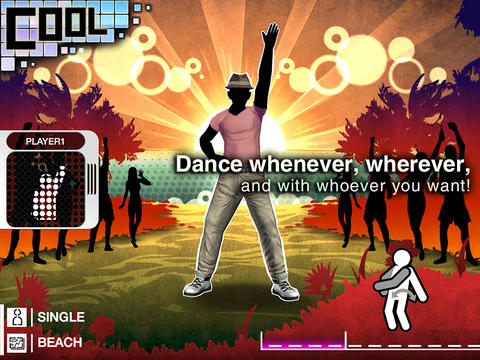
-

Leaked help files reveal details on Windows 8.1 Update, and Windows 8.1 with Bing
Publié: mars 6, 2014, 1:14pm CET par Wayne Williams
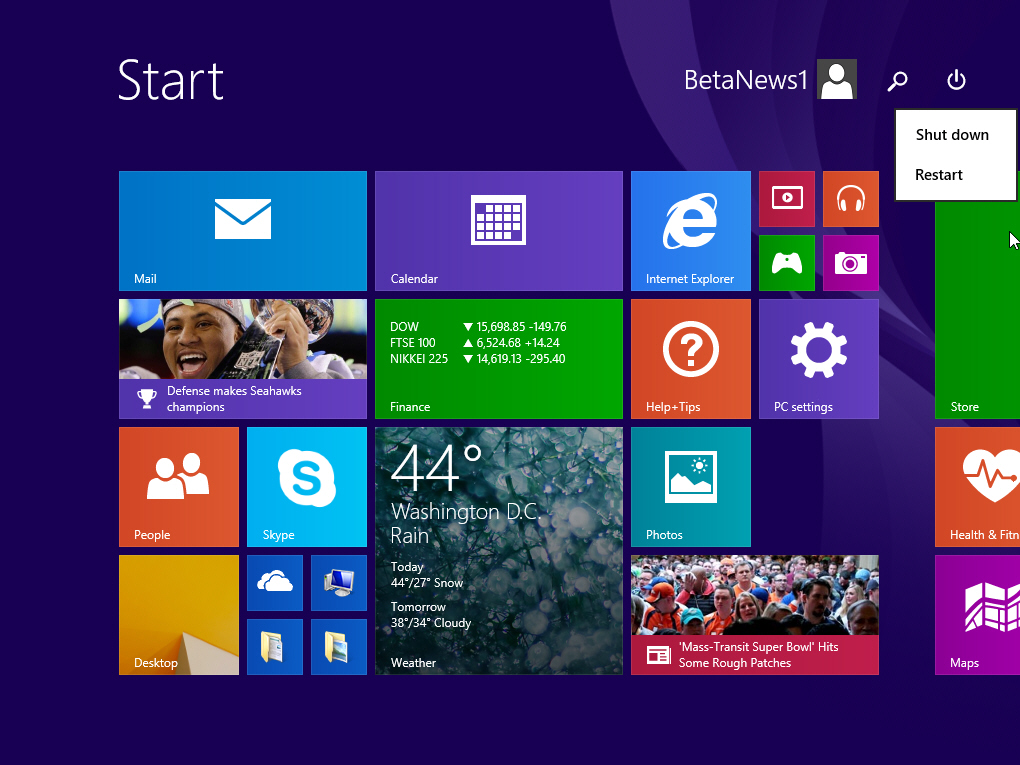
Microsoft is readying an update for its tiled operating system that is expected to be released next month. Thanks to various leaked builds we have a good idea of what to expect from it -- plenty of tweaks to make it more keyboard and mouse friendly mostly -- and we thought we knew what it would be called too -- Windows 8.1 Update 1. However, it turns out that might not be the case.
Help files for the Windows Assessment and Deployment Kit (ADK) for Windows 8.1 (leaked by WZor.Net) refer to the forthcoming pack as simply Windows 8.1 Update (so apparently not "Spring Update" or "Feature Pack" as some have suggested). They also reveal more about the mysterious "with Bing" edition of the OS.
According to the "What's New in the Windows ADK for Windows 8.1" section, Windows 8.1 Update will be released to OEMs as an MSU file that can be installed "to a running Windows installation and an offline Windows image". Further in the help file, there are details on how to update Windows images using the Windows 8.1 Update which will be available as "three" update files (yes, there are four items listed):
- Windows 8.1 Update prerequisite (KB2919442)
- Windows 8.1 Update (KB2919355)
- Windows 8.1 Update Supplement package (KB2932046)
- Windows 8.1 Update Supplement 2 package (KB2937592)
As for Windows 8.1 with Bing, the help files state that it is a new Windows edition that "helps OEMs add Windows to low-cost devices while driving end user usage of Microsoft Services such as Bing and OneDrive. Windows 8.1 with Bing is similar to other editions of Windows and should be imaged, updated, and deployed the same as any other Windows edition". There’s nothing to suggest it will be a free version of Windows 8.1, as some people have claimed.
Elsewhere further details are revealed.
- This edition of Windows sets Bing as the default search engine within Internet Explorer. Users will be able to manually change default search settings and install additional browsers of their choice.
- Windows 8.1 with Bing is based on the feature set available in Windows 8.1 Core and includes all of the latest updates, including Windows 8.1 Update. Windows 8.1 with Bing is available for 32-bit and 64-bit platforms.
- OEMs will not be able to change the default search engine with the SearchScopes unattend setting, Registry key, or 3rd party installation tools. When a user starts Internet Explorer, Bing is automatically set to the default Search Engine and will override any OEM-configured search provider.
The help files don't go into massive details beyond that, or shed any light on what's new in the Windows 8.1 Update, but we won't need to wait long now to install the finished update -- it's expected to be released as part of next month's Patch Tuesday, which falls on April 8th.
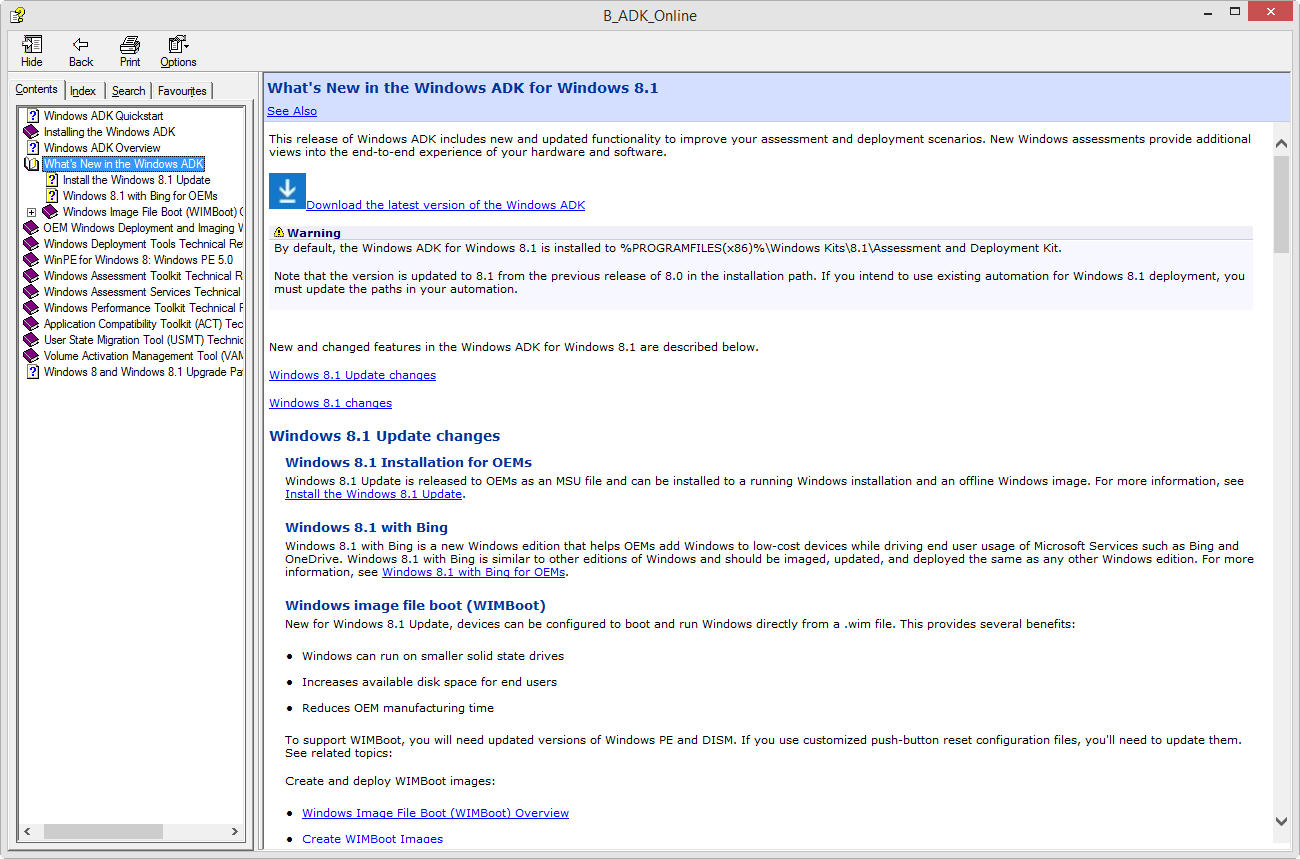
-

XP upgrades will slow the PC's decline, not spark a recovery
Publié: mars 5, 2014, 3:47pm CET par Wayne Williams
 According to International Data Corporation (IDC) Worldwide Quarterly PC Tracker, global PC shipments fell by 9.8 percent in 2013, the most severe contraction on record, but the future looks slightly brighter going forward. And by "slightly brighter" I mean things thankfully shouldn’t be anywhere near as bad as they were last year.
According to International Data Corporation (IDC) Worldwide Quarterly PC Tracker, global PC shipments fell by 9.8 percent in 2013, the most severe contraction on record, but the future looks slightly brighter going forward. And by "slightly brighter" I mean things thankfully shouldn’t be anywhere near as bad as they were last year.IDC had been anticipating a decline of 10.1 percent by the end of 2013, so the actual results were slightly more positive than had been expected in mature markets (which includes the US, Western Europe, Japan, and Canada). Part of the reason for this is, IDC believes, down to short-term factors like the rise in people purchasing XP replacements, but it doesn’t expect this bump to last for very long. XP still accounts for a third of the desktop OS market share, and there’s currently no signs of a trickle of users migrating to Windows 8.1, let alone the flood of users Microsoft would like to see.
In emerging markets, volume declined by 11.3 percent, and competition from other devices and economic pressures means that the outlook has deteriorated further than initially forecast.
"Emerging markets used to be a core driver of the PC market, as rising penetration among large populations boosted overall growth", Loren Loverde, vice president, Worldwide PC Trackers says. "At the moment, however, we're seeing emerging regions more affected by a weak economic environment as well as significant shifts in technology buying priorities. We do expect these regions to recover in the medium term and perform better than mature regions, but growth is expected to stabilize near zero percent, rather than driving increasing volumes as we saw in the past".
So what does this all mean for the PC’s future? IDC forecasts worldwide shipments to fall from 315.1 million in 2013 to 295.9 million in 2014, and drop down slightly to 291.7 million in 2018. The decline will be buoyed slightly by growth of portable PCs in emerging markets once things stabilize.
Percentage wise, while global PC shipments dropped 9.8 percent in 2013, and are forecast to drop by 6.1 percent in 2014, IDC sees a decline of just 0.2 percent in 2018. Don’t crack open the champagne just yet.
PC Shipments by Region and Form Factor, 2013-2018 (Shipments in millions)
Region Form Factor 2013
2014*
2018*
Emerging Markets Desktop PC 85.6
80.5
77.2
Emerging Markets Portable PC 96.2
87.2
94.5
Emerging Markets Total PC 181.9
167.7
171.7
Mature Markets Desktop PC 51.1
48.6
42.0
Mature Markets Portable PC 82.2
79.6
77.9
Mature Markets Total PC 133.3
128.2
120.0
Worldwide Desktop PC 136.7
129.1
119.2
Worldwide Portable PC 178.4
166.8
172.5
Worldwide Total PC 315.1
295.9
291.7
Source: IDC Worldwide Quarter PC Tracker, February 2014
* Forecast data
Image Credit: FJstudio/Shutterstock
-

Zombies, Run! Season 3 out next month
Publié: mars 4, 2014, 6:17pm CET par Wayne Williams

I went for a 5k run before starting work this morning, and as always Zombies, Run! provided me with the motivation required to not come to a stop, bored, after ten minutes. I’ve covered the immersive app several times in the past, but if you’re not familiar with it, Zombies, Run! basically turns a real-world jog into a journey through the zombie apocalypse. Episodic stories unfold in between tracks from your playlist as you run.
There are plenty of episodes on offer for regular runners, and a radio mode will give you something to listen to once you’ve finished with the main story and side quests. However, sooner or later you’ll have listened to everything and be ready for new tales, and the good news is they’re on their way.
Season 3 of Zombies, Run! will be launching this April (there’s no firm date yet) and according to Six to Start, the developers, bring big changes for the people of Abel Township where your alter ego, Runner 5, is based. Intriguingly, it sounds as if things may not be as linear this time -- "Excitingly, once or twice this season, some crucial decisions will be down to you, the player -- choose wisely, for you hold Abel Township in your hands" Six to Start teases.
There will be several new features introduced in the app, including detailed statistics, a new and improved codex, additional sharing options, and a redesigned interface.
Zombies, Run! is available for Android and iOS 7.
-

Skype for Outlook.com finally available to all, gains HD video calling
Publié: mars 4, 2014, 4:15pm CET par Wayne Williams

Ten months ago, Microsoft announced it would be rolling out a preview version of Skype for Outlook.com in the United Kingdom that would allow users to make audio and video calls directly from their inboxes.
Three months later, the devices and services giant expanded the preview’s availability to five additional countries -- United States, Canada, Germany, France and Brazil -- and stated it would be rolling out the feature to the rest of the world "in the coming weeks". A mere seven months later and finally, today, Microsoft makes good on that promise, announcing that Skype for Outlook.com is now available to all. The service also gains support for HD video calls.
In a new blog post, Karen Tong, Senior Product Marketing Manager at Skype, writes: "With Skype for Outlook.com, you can easily connect with your Skype friends right from your Outlook.com inbox, so you can go from chat or email to a video call with just one click. If you haven’t had a chance to it check out, getting started is easy. Just download the plugin, link your Skype account to find your friends and start a video call or send an instant message without having to leave your inbox! The latest version of the plugin now has Mac support for Safari, so you have even more ways to connect with the people who matter".
As well as allowing users to make and receive HD video calls (provided they have HD compatible displays and webcams of course), Microsoft squashes a bug which caused calls to continue to ring after pick-up for users who were running both Skype and the Outlook.com plugin at the same time.
It might have taken Microsoft a ridiculously long time to make the feature available to all users of its webmail service (Karen Tong's blog post is headed "Skype Brings the World Closer Together, One Inbox at a Time", which is rather apt), but it got there in the end. Do you use Skype for Outlook.com?
Image Credit: gemphoto/Shutterstock
-

Best iOS apps this week
Publié: février 28, 2014, 3:38pm CET par Wayne Williams
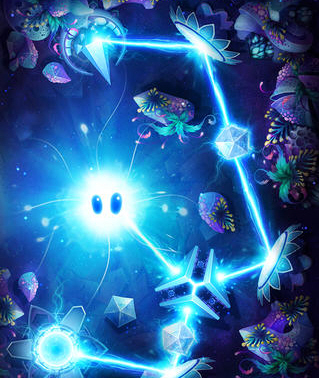 Eighth in a series. The app that’s got me most excited this week isn’t even out yet. Audio Defence: Zombie Arena, from the makers of Papa Sangre II, is an audio-only first person zombie shooter that promises to be awesome. If it can hit its Kickstarter target that is.
Eighth in a series. The app that’s got me most excited this week isn’t even out yet. Audio Defence: Zombie Arena, from the makers of Papa Sangre II, is an audio-only first person zombie shooter that promises to be awesome. If it can hit its Kickstarter target that is.Of the new and updated apps that have arrived in the store this week, the Professor Layton inspired The Voyage is a great puzzler, and God of Light will similarly tax your gray matter. Parents worried about what their children get up to on the web while using an iPad (or iPhone), will be interested in the MetaCert browser. Google has improved its Hangouts messenger apps, and a chunk of the world's knowledge has been curated into Learnist.
As always, if I miss an app that you think should definitely have been included, let me know in the comments below, or drop me an email.
Here is my selection for this week.
Paid App of the Week
The Voyage ($0.99)
Offers in-app purchases.
From Toy Studio LLC, the makers of the excellent (and similar) The Curse, this is a puzzle game in the vein of the Professor Layton series on DS. It’s described as a "swashbuckling pirate experience" and features over 100 puzzles and six difficulty levels.
There are interactive events including preparing pirate snacks and picking locks.

Free App of the Week
Offers in-app purchases.
This app aims to put the world's knowledge at your fingertips. It's a crowd-sourced collection of knowledge from experts around the world. Examples of available information include where to find the best ice cream shops in San Fransisco, how to decorate a dorm room on a dime, the essential books to read to become an expert, how to pack a suitcase like a flight attendant, and how to get a book published. It also offers information on diverse topics such as solar flares, polar bears, and tipping.
You can purchase premium knowledge in-app.

Other Apps
God of Light ($1.99)
In this fun physics-based puzzler you play as a Shiny an extra-terrestrial whose job it is to save the universe from the impending darkness by directing beams of energy in order to activate the Sources of Life and restore light.
There are 3 different game worlds and 75 challenging levels to play through. Collecting glowing creatures will help you solve puzzles.
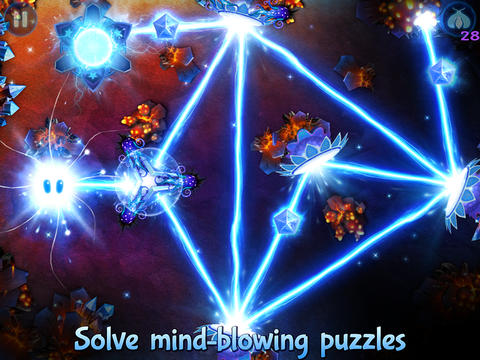
MetaCert iPad Browser with Parental Controls
Offers in-app purchases.
If you’re happy for your children to use your iPad, but not quite so comfortable with not knowing exactly what they’re getting up to online, you can use this safe, ad-free iPad browser with built-in parental controls. It blocks pornography from search results, and some 700+ million pages of adult content, and includes a customizable block list. You can monitor internet usage of your family and protect your own browsing history with a password.
If you like the browser and want to reward the developers for their hard work, you can make an in-app donation.
There’s also a version available for iPhone.
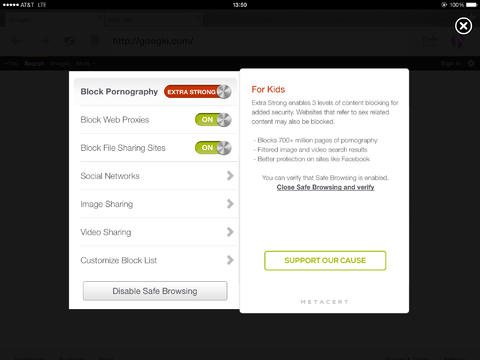
Pango Hide and Seek ($2.99)
Pango is a famous blue raccoon (and star of various games, including Pango Free, Pango Imaginary Car and Pango is Dreaming), who likes hiding in this app aimed at children aged three and up. Players can search for Pango across 15 different worlds, from the African savanna to snowy mountains. The backgrounds are all fully active to help further entertain young players.
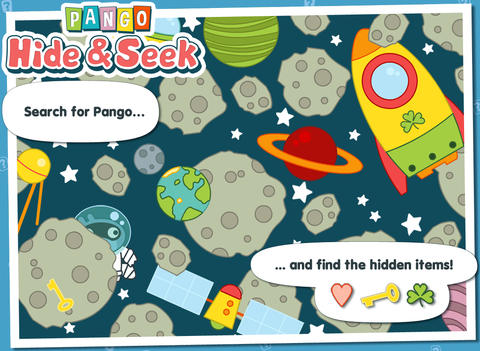
Google has updated the app for its popular messaging platform. Changes include full optimization for the iPad and iOS 7, picture-in-picture video calling, animated mood stickers, and the ability to record and send video messages up to 10 seconds in length. You can now also send a map of your current location to other Hangouts users.

Apple’s App of the Week
This week's free app courtesy of Apple is a hunt and find activity book all about firefighters and policemen, with interactive adventures that involve putting out fires and saving people and animals. It's aimed at children aged three plus, but my two year old loves it, and it's entertaining for parents too.

-

Microsoft's attempts to persuade XP users to switch to Windows 8.1 are wide of the mark
Publié: février 26, 2014, 8:38pm CET par Wayne Williams
 On April 8, 2014, Microsoft will officially end support for Windows XP. After that date, users of the aging OS will no longer receive new security updates, hotfixes, support options, or online technical content updates.
On April 8, 2014, Microsoft will officially end support for Windows XP. After that date, users of the aging OS will no longer receive new security updates, hotfixes, support options, or online technical content updates.Obviously the tech giant is worried about the dangers than might befall XP users who continue to cling on to the decade-and-a-bit old OS after that date, and that’s the reason for all the blog posts that have been appearing lately. I mean, sure, it looks like Microsoft is cynically using the death of XP support purely to try and persuade people to upgrade to Windows 8.1 but that’s not the case, honestly. Oh, okay, maybe it is. A bit.
Today’s new blog post is a prime example. It helpfully goes into details on what is going to happen after April 8, pointing out that, "Many newer apps won’t run on Windows XP; new hardware may not support Windows XP; and without critical security updates, PCs may become vulnerable to harmful viruses, spyware and other malicious software that can steal or damage personal information and business data". It also adds that "driver support will be discontinued, meaning that new printers, scanners and other devices may not be compatible with PCs running Windows XP and Office 2003".
So far, so helpful, but then suddenly the inevitable Windows 8.1 hard sell kicks in, and XP users are told it’s time to make their move into the modern PC era and are presented with a list of reasons why they should choose the tiled OS, as opposed to the massively more popular Windows 7, or a Linux-based solution, which my colleague Brian Fagioli suggests.
The post describes Windows 8.1 as the "best Windows yet", which is kind of true, and kind of not. I use Windows 8.1 and think it’s great, but you have to ask, if it’s truly the "best Windows yet" why is Microsoft still making wholesale changes to it? But I digress.
Then comes a list of reasons why XP users should choose the new OS, all filled with airy talk of "touch performance", "apps and services" and a "beautifully redesigned Windows Store". If I was an XP user, that would instantly put me off.
If you’ve been using XP since it launched, or for a very long time at least, pretty much your only reason for considering upgrading now would be for security purposes, and to ensure any new software runs properly. A tiled interface, Bing integration, a food and drink app, and the inclusion of IE 11 "designed from the ground up for touch devices" really aren’t going to appear on any XP user’s wish list.
"Windows 8.1 was built around you," the blog post proclaims, "and features an improved and even more customizable Start screen with variable tile sizes and more background designs and colors…"
That doesn’t sound like something built around a Windows XP user.
But that’s the problem with all these blog posts Microsoft has been producing lately. They start off talking about the end of days for XP and then end up cutting and pasting from the Windows 8.1 sales brochure.
If Microsoft really wants people to switch from XP to Windows 8.1, maybe it should be focusing on the features that might actually appeal to those users. Like the ability to automatically back-up personal content, the inclusion of modern drivers, improved multi-monitor support, various future proofing features, built-in protection against malware, ongoing security updates and support, and the fact you can refresh your PC without affecting your files. There are plenty of reasons for XP users to consider upgrading to Windows 8.1 but few of those users will be persuaded to make the leap if the best Microsoft has to boast about is a colorful tiled front end and built-in Bing.
Image Credit: Digital Storm/Shutterstock
-

Microsoft rolls out Office 2013 SP1, includes fixes and features
Publié: février 26, 2014, 10:54am CET par Wayne Williams
 Microsoft has released a service pack update for the latest version of Office. Service Pack 1 (SP1) promises greater stability, expanded functionality, and security enhancements for Office 2013, SharePoint 2013 and Exchange Server 2013, as well as improved compatibility with Windows 8.1 and Windows Server 2012 R2.
Microsoft has released a service pack update for the latest version of Office. Service Pack 1 (SP1) promises greater stability, expanded functionality, and security enhancements for Office 2013, SharePoint 2013 and Exchange Server 2013, as well as improved compatibility with Windows 8.1 and Windows Server 2012 R2.The service pack contains all of the public and cumulative updates released since Office 2013 first became available, as well as numerous unreleased fixes and updates that reflect recent changes. SP1 improvements include:
- Compatibility fixes for Windows 8.1 and Internet Explorer 11.
- Better support for modern hardware, such as high DPI devices and the precision touchpad.
- New apps for Office capabilities and APIs for developers.
- Power Map for Excel, a 3D visualization tool for mapping, exploring, and interacting with geographical and temporal data in Excel, is now available to Office 365 ProPlus subscription customers.
- Improvements to the Click-to-Run virtualization technology that installs and updates Office 365 desktop applications.
- SkyDrive Pro is now OneDrive for Business.
Office 2013 customers will begin to get notifications of SP1 availability through Windows Update within the next 30 days, or you can download it directly below.
Microsoft Office 2013 Service Pack 1 (32-bit)
Microsoft Office 2013 Service Pack 1 (64-bit)
Office 365 subscribers are always on the most up-to-date version of Office products so don’t need to do anything.
Photo credit: kurhan/Shutterstock
-

Will you buy the new Samsung Galaxy S5?
Publié: février 25, 2014, 2:21pm CET par Wayne Williams
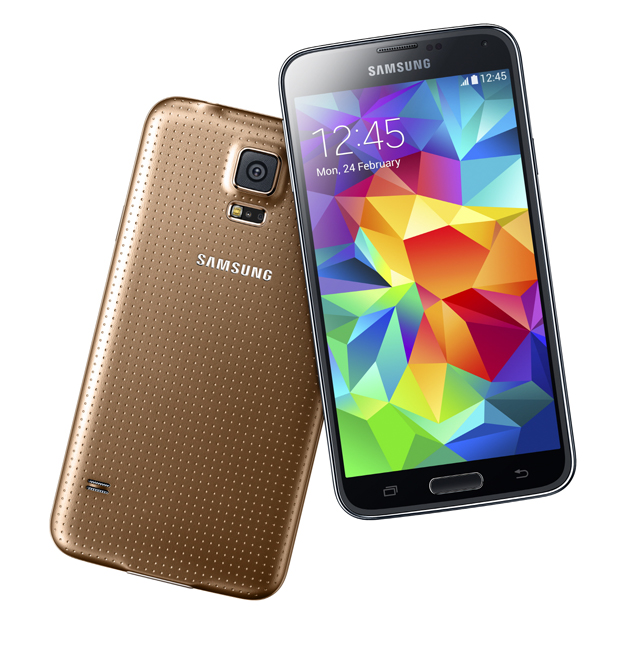
So Samsung has taken the wraps off its new flagship smartphone, the Galaxy S5. It's a good looking device, that refines and improves on last year's model and borrows elements from Apple's similarly named device, most notably the fingerprint scanner used to unlock the phone and make mobile purchases. Even the choice of colors on offer is similar -- there's black, white and gold available, although Samsung includes a smart "electric" blue shade too.
It doesn't just copy from Apple though, it has some welcome additions of its own. Highlights include dust and water resistance, a Download Booster, which speeds up downloads by bonding Wi-Fi and LTE simultaneously, a built-in heart rate monitor, an improved 16 megapixel camera, and an Ultra Power Saving Mode that shuts down all non-essential features to allow you to eke out the last remaining drops of battery life.
The device is slightly larger than last year's model too, at 5.1 inches, and runs Android 4.4.2 KitKat and sports Samsung’s customized user interface and S-branded apps.
It's due to hit the market in April, and will be available on all the major carriers, although there's no word on pricing yet. Putting that little detail aside, assuming it's within your budget, do you think you'll buy it? Cast your vote and let me know the reason for your choice.
Note: There is a poll embedded within this post, please visit the site to participate in this post's poll. -

Samsung announces the Galaxy S5 -- 'goes back to basics'
Publié: février 24, 2014, 8:52pm CET par Wayne Williams
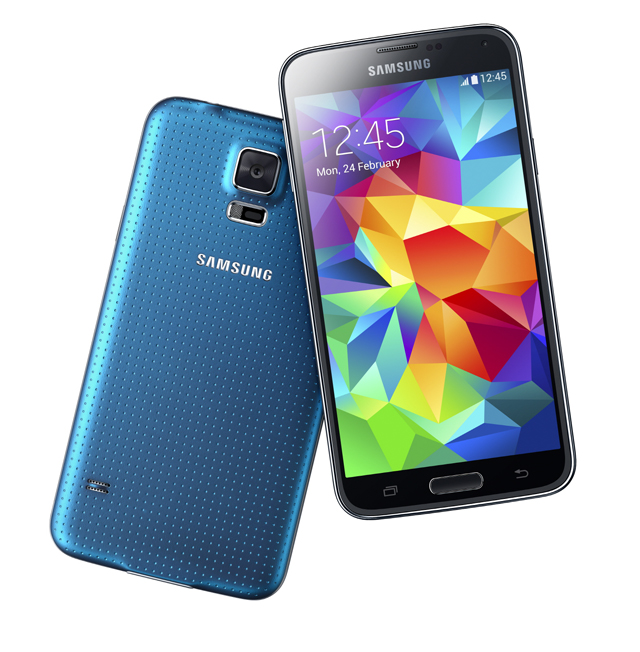
Today at the Unpacked 2014 event at Mobile World Congress, Barcelona, Samsung introduces the latest iteration of its flagship smartphone. The Galaxy S5 is, as you’d probably expect, evolution not revolution. The smartphone looks like a more polished update of last year’s S4 and comes with Android 4.4.2 KitKat and Samsung’s user interface and S-branded apps.
The device is slightly larger than the S4, at 5.1 inches, with a 1080p Super AMOLED panel. It sports the same plastic surround, but with a new perforated look, and is IP67-rated for water and dust resistance, and so can survive being submerged in 3 feet of water for up to 30 minutes. There's a new home key below the screen with an integrated fingerprint scanner that can be used to unlock the phone and authenticate mobile payment purchases online.
The Galaxy S5 offers a 16 megapixel camera that delivers what Samsung says is "the world’s fastest autofocus speed up to 0.3 seconds". It also offers a new selective focus feature that lets users focus on a specific area of an object while blurring out the background.
The phone supports the fifth generation Wi-Fi 802.11ac and 2X2 MIMO, and LTE Category 4 standard. It also comes with Download Booster, which speeds up downloads by bonding Wi-Fi and LTE simultaneously. Internals include a 2.5GHz quad-core processor, 2GB of RAM, and a larger battery the promise of 20 percent extra life. The device also offers a new Ultra Power Saving Mode that switches the display to black and white, and shuts down all unnecessary features to minimize the battery consumption.
For anyone who relies on their smartphone to keep them fit, the S5 has a lot to offer. S Health 3.0 provides a comprehensive personal fitness tracker to help users monitor and manage their behavior, along with additional tools including a pedometer, diet and exercise records, and built-in heart rate monitor which looks really cool.
The full list of specs is as follows:
Network
LTE Cat.4 (150/50Mbps) Display
5.1” FHD Super AMOLED (1920 x 1080) AP
2.5GHz Quad core application processor OS
Android 4.4.2 (Kitkat) Camera
16MP (rear), 2.1MP (front) Video
UHD@30fps, HDR, video stabilization; Video Codec: H.263, H.264(AVC), MPEG4, VC-1, Sorenson Spark, MP43, WMV7, WMV8, VP8; Video Format: MP4, M4V, 3GP, 3G2, WMV, ASF, AVI, FLV, MKV, WEBM Audio
Audio Codec: MP3, AMR-NB/WB, AAC/ AAC+/ eAAC+, WMA, Vorbis, FLAC; Audio Format: MP3, M4A, 3GA, AAC, OGG, OGA, WAV, WMA, AMR, AWB, FLAC, MID, MIDI, XMF, MXMF, IMY, RTTTL, RTX, OTA Camera
Features
HDR (Rich tone), Selective Focus, Virtual Tour Shot, Shot&More Additional
Features
IP67 Dust and water Resistant Ultra Power Saving Mode Download Booster S Health 3.0 Quick Connect Private Mode Kids Mode Google Mobile Services
Chrome, Drive, Photos, Gmail, Google, Google+, Google Settings, Hangouts, Maps, Play Books, Play Games, Play Newsstand, Play Movie & TV, Play Music, Play Store, Voice Search, YouTube Connectivity
WiFi: 802.11 a/b/g/n/ac HT80, MIMO(2x2); Bluetooth®: 4.0 BLE / ANT+; USB: USB 3.0; NFC; IR Remote Sensor
Accelerometer, gyro, proximity, compass, barometer, Hall, RGB ambient light, Gesture(IR), Finger Scanner, Heart rate sensor Memory
RAM: 2GB; Internal Memory: 16/32GB; microSD slot upto 64GB Dimension
142.0 x 72.5 x 8.1mm, 145g Battery
2800mAh; Standby time: 390 hrs / Talk time: 21 hrs "With the Galaxy S5, Samsung is going back to basics to focus on delivering the capabilities that matter most to our consumers,” said JK Shin, President and Head of IT & Mobile Communications Division at Samsung. “Consumers are looking for mobile tools that inspire and support them as they improve their everyday lives. The Galaxy S5 represents an iconic design with essential and useful features to focus on delivering the ultimate smartphone on the market today through people inspired innovation".
The Galaxy S5 comes in a range of colors, including "charcoal Black", "shimmery White", "electric Blue" and "copper Gold". It will be available globally through Samsung’s retail channels, e-commerce and carriers from April.
So what do you think of Samsung's new flagship smartphone? Are you excited by it, or disappointed? Leave your comments below.

-

Watch Samsung’s Galaxy S5 announcement here LIVE
Publié: février 24, 2014, 4:08pm CET par Wayne Williams
There’s already been a lot of big announcements pouring out of the Mobile World Congress, Barcelona, but the really big one is still to come. Samsung is set to introduce its Galaxy S5 smartphone today, and thanks to the usual round of photo leaks we already have a good idea of what to expect.
According to images which found their way on to the web earlier today, the device will have a larger 5 inch diagonal display, dimpled plastic back, and include a 16 megapixel camera on the rear, fingerprint scanning app, and a download booster that will make use of both LTE and Wi-Fi to speed up larger downloads.
We’ll know the full details from 11am PT/2pm ET/7pm GMT when Samsung’s Unpacked5 announcement is scheduled to start, and fortunately for anyone not at the Mobile World Congress, Samsung will be streaming the event live on its YouTube page, and you’ll be able to watch it right here.
In preparation for the event, Samsung has rolled out a trailer for the “Next Galaxy” which you can watch below.
-

Watch Samsung’s Galaxy S5 announcement here
Publié: février 24, 2014, 4:08pm CET par Wayne Williams
There’s already been a lot of big announcements pouring out of the Mobile World Congress, Barcelona, but the really big one is still to come. Samsung is set to introduce its Galaxy S5 smartphone today, and thanks to the usual round of photo leaks we already have a good idea of what to expect.
According to images which found their way on to the web earlier today, the device will have a larger 5 inch diagonal display, dimpled plastic back, and include a 16 megapixel camera on the rear, fingerprint scanning app, and a download booster that will make use of both LTE and Wi-Fi to speed up larger downloads.
We’ll know the full details from 11am PT/2pm ET/7pm GMT when Samsung’s Unpacked5 announcement is scheduled to start, and fortunately for anyone not at the Mobile World Congress, Samsung will be streaming the event live on its YouTube page, and you’ll be able to watch it right here.
In preparation for the event, Samsung has rolled out a trailer for the “Next Galaxy” which you can watch below.
-

Microsoft now fighting the Windows 8.x war on two fronts -- can it win either battle?
Publié: février 24, 2014, 2:55pm CET par Wayne Williams

According to reports, Microsoft is set to slash the price it charges OEMs for Windows 8.x. This doesn’t necessarily mean you’ll be able to pick up a copy of the tiled OS for any cheaper, but it does mean significant savings for (some) PC builders.
At the moment, Microsoft charges all OEMs $50 per copy of Windows 8. The price cut will see this license figure reduced by 70 percent to $15 per copy. However, there is a caveat -- it will only apply to devices that will be sold for $250 or less at retail. In other words, Microsoft is hoping to kick start a run of lower-priced PCs, in an effort to compete with Chromebooks.
PC makers have struggled in the face of dwindling sales, and so have had to slash the retail cost of their computers, and that has eaten into profits. The push towards including costly touch-friendly screens in new PCs hasn’t helped either. Sure, PC makers could scrap the touch element, but doing so is risky -- Windows 8.x is built with touch in mind, and the days when OEMs can offer Windows 7 instead are drawing to a close. End of sales for PCs with Windows 7 Home Basic, Home Premium, and Ultimate preinstalled has been set at October 31, 2014.
Reducing the licensing cost will allow PC builders to offer consumers savings, which will help. However, Microsoft has another incentive to persuade makers to start cranking out low cost PCs -- Windows 8.1 Update 1.
The forthcoming OS update, which Microsoft has confirmed will be out in the spring, adds a bunch of features and tweaks that makes the tiled operating system much more appealing to anyone still using the keyboard and mouse -- which is the vast majority of PC users.
So what we have here is a two pronged effort from Microsoft to help PC builders deliver low-cost non-touch enabled systems, that could help arrest the PC’s free-fall, and also allow Windows to compete with the growing threat posed by Chromebooks.
Just how great is the Chromebook threat to Microsoft? Massive. Just take a look at the laptops for sale on Amazon and you’ll see three of the top five best sellers are running Google’s Chrome OS. PC vendors like ASUS and HP are now also rolling out inexpensive and attractive Chromeboxes, challenging Windows on the desktop.
Consumers who just want a device on which to browse the web, check email, update Facebook and work in the cloud, don’t need to spend a fortune on a new PC that offers features, and power, they don’t need. And let’s be honest here, many new PCs come bundled with 'crapware' that PC makers add to systems to help increase their razor thin profits. Chrome OS powered devices don’t.
With Windows 8 Microsoft went all-in on touch in an attempt to fight back against the threat of Android and iOS powered tablets. But by neglecting legions of keyboard and mouse users it left the door open for Chrome OS to steal buyers, and now finds itself waging a war on two fronts. Microsoft needs to do something major to ensure Windows' dominance, and quickly. Slashing the price it charges OEMs for Windows 8.x and making the OS more appealing to keyboard and mouse users is a start, but is it enough?
Image Credit: Palto/Shutterstock
-

Best iOS apps this week
Publié: février 21, 2014, 2:12pm CET par Wayne Williams
Seventh in a series. There was no round-up of iOS apps last week, not because there weren’t any worthy releases -- this is iOS, there are always great apps to cover -- but because I was away. I’m back now though, and so normal service is resumed.
This week there were some great new apps and games released, including a stunning adventure set inside a pop-up book, a 3D tour through some of nature's wonders, and a game that aims to improve your listening skills (something my wife says I need to do -- or at least I think that's what she says).
As always, if I miss an app that you think should have been included, let me know in the comments below or drop me an email.
Here is my selection for this week.
Paid App of the Week
Tengami ($4.99)
An atmospheric adventure game set inside a Japanese pop-up book. You flip, fold and slide the paper world in order to solve puzzles and discover secrets.
It looks amazing, sounds amazing and the gameplay is very unusual and striking. Definitely worth a download if it looks like your sort of game (and it's definitely mine).

Free App of the Week
Offers in-app purchases.
Ken Burns is an American director and producer of documentary films, arguably best known for the "Ken Burns" effect (in which the filmmaker defines a motion path to control how the camera pans) used in software applications like Apple's iPhoto, iMovie and Final Cut Pro X.
This app covers American history and offers a timeline view, theme view and film view.
Although the app is free you can purchase additional playlists for $9.99.
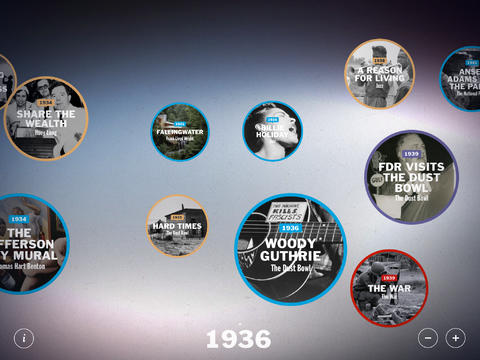
Other Apps
Forces of Nature ($0.99)
In this side scrolling defense game you use Sprout to protect the forest from incoming waves of robots, using his attacks and specials, and by strategically planting an army on platforms and on the ground.
The game offers unlockable units, star ratings, bonus levels and a survival mode.
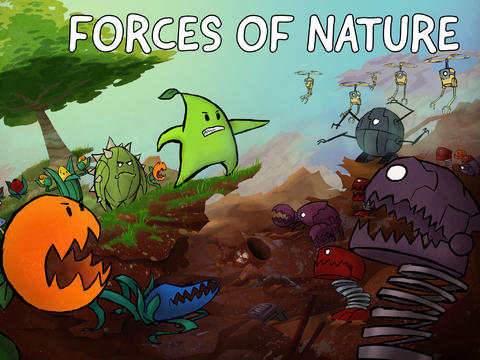
Offers in-app purchases.
This iPhone app aims to improve your listening skills and boost memory to retain what you hear.
It’s different from regular memory games because it focuses on listening skills rather than visuals. Hit Play, listen to few random words and see if you can retain everything you've heard. It’s harder than it sounds.
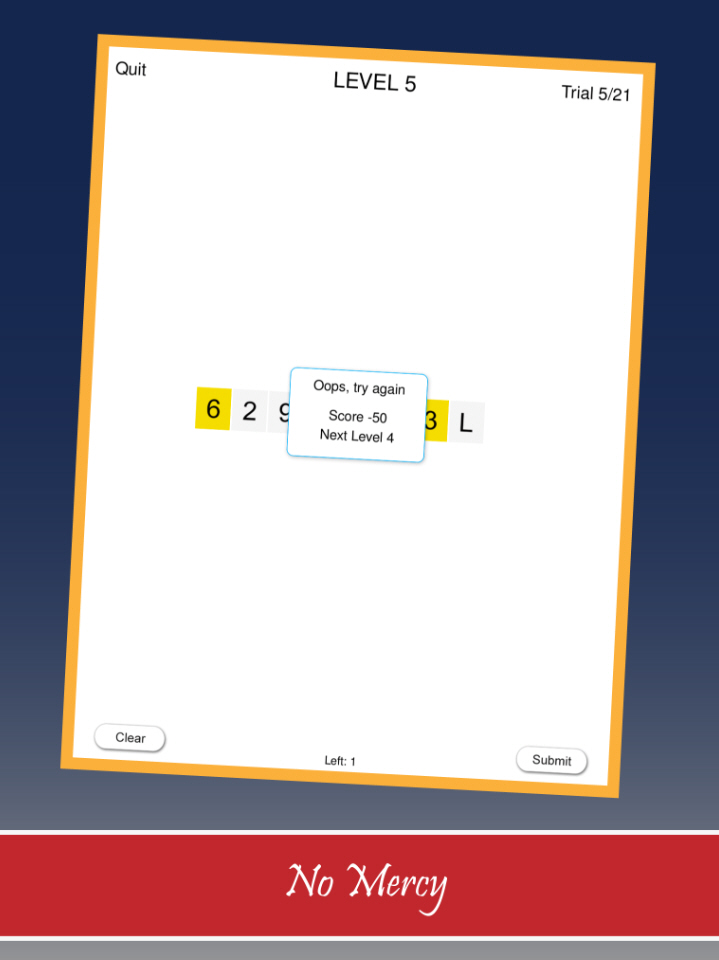
Brian Cox's Wonders of Life ($5.99)
The follow-up to the Wonders of the Universe app takes you on a tour through the majesty of nature. It includes over 30 creatures and habitats rendered in 3D, over two hours of HD video, more than 1,000 images with narration, and additional bonus content you can access by signing in.

Apple’s App of the Week
Offers in-app purchases.
This week’s free app is a game from SQUARE ENIX, creators of the Final Fantasy series. As the name suggests this fun adventure features some very tiny ninja heroes. The aim is to run, jump and hack your way through spellbound lands in an attempt to reclaim an artifact stolen from the dragon.
It’s great fun, but you’ll be prompted to buy coins to prolong gameplay.

-

Google needs to do something about Nest’s birdbrained support
Publié: février 20, 2014, 2:32pm CET par Wayne Williams
 I purchased four Nest Protect wired smoke detectors direct from Nest at the end of January. I live in the UK, they were shipped from Holland, and so took five days to arrive. No big deal. I got an electrician friend round to fit them, and he made an interesting discovery -- the power cables connected to my existing smoke detectors were dead (the devices still worked as they were running off batteries, and past false alarms showed they were linked together, so there was no safety risk). The only way to connect my new Nest devices was to do a massive rewiring job. I decided to speak to Nest and swap my wired models for wireless battery ones.
I purchased four Nest Protect wired smoke detectors direct from Nest at the end of January. I live in the UK, they were shipped from Holland, and so took five days to arrive. No big deal. I got an electrician friend round to fit them, and he made an interesting discovery -- the power cables connected to my existing smoke detectors were dead (the devices still worked as they were running off batteries, and past false alarms showed they were linked together, so there was no safety risk). The only way to connect my new Nest devices was to do a massive rewiring job. I decided to speak to Nest and swap my wired models for wireless battery ones.You’d imagine this would be a simple and painless task. But Nest, which was recently purchased by Google for $3.2 billion and produces intelligent hardware, has possibly the least intelligent returns policy in place. Four phone calls later, and I still have my wired Nest devices because the company has what has to be a contender for the worst support ever.
I called Nest, as that seemed the quickest route. The website says email queries take a while to be answered. I spoke to a guy -- who was clearly in America and appeared to be speaking to me through a tin can attached to a piece of string, and explained my problem. He had no clue what to do, so asked a manager. Eventually he returned, and told me I needed to send my wired Nest Protects back, and I’d get a refund. Then I could buy new wireless ones. They couldn’t do a straight swap. Once they received the wired models back, they’d arrange a refund, which could take several weeks.
Instructions on how to return the devices would come to me within 24 hours. Not right away, it would take an entire day for an email to be sent.
Or rather it wouldn’t. No email arrived that day, or the next, or the next. I phoned again, and spoke to someone else in America who sounded as if he was standing twenty feet away from the phone. After I told him I couldn’t hear a word he was saying, he eventually did something at his end, and I could finally speak to him properly. He apologized for the lack of email, and said he’d get one with the return instructions sent. I’d have to wait a day or two.
This email eventually arrived. The return instructions said I’d need to send the wired Nests back to the returns center in New Jersey. Which would cost me around £100 in carrier fees.
I called Nest back. The next person I spoke to, Jarvis, sounded knowledgeable and said I should send it to the local agent, not to New Jersey. He said he would get this organized. I received an email from him immediately confirming our conversation and informing me I would get an email with the return instructions in 3-5 days. A week passed, nothing.
I called back earlier today and spoke to another chap in America. I didn’t get his name because he sounded as if he was eating toast in the bottom of a well. He has promised to look into it. I had to give him an entirely different email address, not my Gmail one, in case that was the source of my problems.
I gave a Microsoft email address to someone in a company that has just been bought by Google because the Google address might have been causing them problems.
He informed me I will receive an email in the next two days.
So, to recap -- Nest appears not to be able to arrange a straight swap for wired/wireless Nest Protects. It appears to have no practical returns policy in place. I have to phone America to speak to someone, and emails reportedly take anything from two days to five days to arrive, except they don’t get sent and so never arrive. Three weeks later I am no closer to returning the devices, let alone getting new ones.
I have actually installed and used Nest Protect (the UK based PR company handling the account sent me some) and they are great. But I’m no longer sure I can trust my home and family’s safety to these devices. What if one stops working? What if they all do? I can’t just speak to someone to fix the problem, or get a replacement sent out. If Nest can’t arrange a simple return, what hope is there of it handling anything more complicated?
Photo Credit: Ron Leishman/Shutterstock
-

SkyDrive relaunches as OneDrive, adds new features
Publié: février 19, 2014, 9:10am CET par Wayne Williams
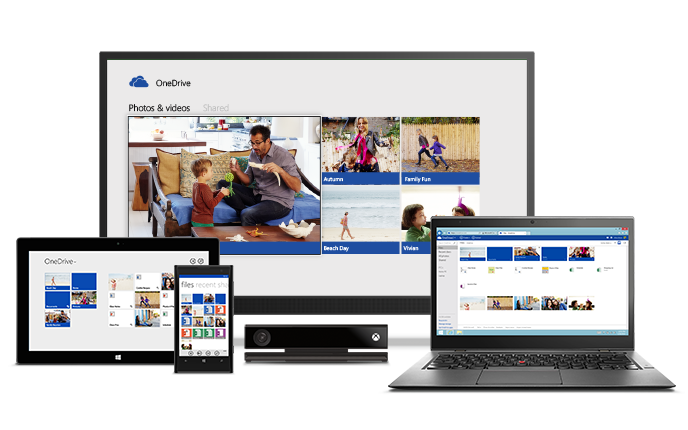
Following a legal battle with satellite broadcaster BskyB, Microsoft was forced to change the name of its popular cloud storage service SkyDrive, opting to go with OneDrive. The name change was unveiled three weeks ago, but today the update begins rolling out across all compatible devices.
Microsoft hasn’t simply just changed the name and logo of its product, and switched the web address to onedrive.com, it’s added some additional features too, and to celebrate the launch is giving away a grand total of 10 petabytes of free storage.
"When we announced the new name OneDrive, we noted how it is much more aligned with our vision for the future. Our goal is to make it as easy as possible for you to get all of your favorite stuff in one place -- one place that is accessible via all of the devices you use every day, at home and at work. Because let’s face it, until now, cloud storage services have been pretty hard to use, and the vast majority of us still have our stuff spread out everywhere. In fact, according to a recent poll, at least 77 percent of people who are familiar with the cloud still have content stored on a device that is not backed up elsewhere. We want to change that,” Microsoft says.
Android users can now enjoy automatic camera backup, so photos are uploaded to the cloud as soon as they are taken -- something that’s been possible for iOS and Windows Phone users for a while.
You can now share and view videos in OneDrive as easily as photos. Videos get transcoded on the fly, so they’re ready to watch at the optimal size on any device. In other words, if you upload a 720p clip and share it with a friend who wants to watch it on their smartphone over a 3G connection, it will be served up at the most appropriate resolution.
If you require more free storage than the default 7GB, OneDrive offers a choice of ways to earn additional space. Refer friends to the service and you’ll receive 500 MB per friend, up to a maximum of 5 GB and Microsoft will also give you 3 GB just for using the camera backup feature. If you want to pay for additional storage, there’s a new monthly payment plan.
To celebrate the official launch of OneDrive Microsoft is giving 100,000 people 100 GB of free storage for one year. For your chance to be one of those lucky people you’ll need to follow @OneDrive on Twitter and watch for clues.
-

Happy 1st birthday Outlook.com! Microsoft gives away 'celebration packages' to mark the big day
Publié: février 18, 2014, 7:58pm CET par Wayne Williams
Time sure goes fast. It’s hard to believe but it’s been a year since Outlook.com came out of preview. To celebrate the one year anniversary, Microsoft has created a video showing the new features and changes it has made to its popular webmail service.
"One year ago today, Outlook.com came out of preview and rolled out to people worldwide. It’s been a great year. We’ve learned a lot, heard great feedback from customers and continue to work every day to deliver the most personal and productive email service. We believe more than ever that Outlook.com is the best email choice for people around the world", Microsoft says.
And of course, what would a birthday be without gifts? No, it’s okay, you don’t need to buy Outlook.com anything -- Microsoft is the one doing the giving. Use the hashtag #OutlookTurnsOne on Twitter and the company will randomly select participants throughout the day to receive Outlook.com celebration packages. Quite what these packages contain isn’t specified.
Do you use Outlook.com? If so, what do you like best about it?
Photo Credit: Ruth Black/Shutterstock
-

Microsoft portrays Surface 2 buyers as idiots
Publié: février 18, 2014, 3:10pm CET par Wayne Williams
In its new "honestly" commercial, Microsoft shows us a man who has just purchased a Surface 2. "This deal was way too good to believe", says the happy purchaser, with a bag tucked under his arm. "Instead of paying too much for an iPad, I got this Surface 2", he adds, before telling the camera it comes with Office (a Surface commercial that mentions that? Amazing!) and Outlook, free Skype calls to over 60 countries, and 200 GB of cloud storage ("others charge for that").
He’s clearly happy with his purchase, so I don’t want to burst his bubble, but I’m going to anyway.
The line that annoys me is this: "Instead of paying too much for an iPad, I got this Surface 2". That’s like saying "Instead of paying too much for a jacket, I bought a pair of trousers". The guy is an idiot.
Don’t get me wrong, I’m not saying people who buy Surface 2 are idiots -- they aren’t. The Surface 2 is a great slate. But clearly people who buy the Surface 2 have different needs from those who choose to buy an iPad.
If what you require from your device is Office, Outlook, Skype and cloud storage, you don’t want an iPad in the first place -- you want a laptop. Or a Windows tablet that you can -- at least some of the time -- use as a laptop.
If on the other hand, you want a selection of apps that is second to none, including some of the best mobile games around, and a device that is designed to be held rather than placed on a surface, a brighter and sharper display, higher quality photos and overall better performance, then go for an iPad.
I own an iPad and a Nexus 7, and I use Windows 8.1. I download apps across all three operating systems and I can tell you this: iOS has the best apps hands down. Android’s selection isn’t as good (and personally I hate all the annoying adverts found in children’s apps) but it’s still excellent -- there’s just more crap to wade through. The Windows apps are fine, and if you don’t know any better you probably won’t know what you’re missing. And if you’re the sort of person who thinks you’ve got a bargain by choosing Surface over iPad, then you won’t know any better.
Ultimately, the choice between the iPad and Surface should never, ever come down to price. If what you want is an iPad, but what you buy is Surface -- purely because it’s cheaper -- you will only ever be disappointed and spend time regretting your purchase. Similarly, if what you want is a device to do work on, with some occasional entertainment, then Surface will be a wise move for you (productivity wise I can work faster on a Surface device than I can on an iPad).
Of course, if you think the iPad is overpriced and you aren’t shopping for a device to work on, you might want to pick up an affordable Android tablet instead, you’ll make even greater savings. Maybe do some research before heading to the shops next time Mr random man in advert.
Oh, and enjoy your 200 GB of free Surface storage that others charge for. I’m sure you know that after two years Microsoft will start charging you for it too -- you do know that, right?
-

Windows 8.1 Update 1 lacks the one thing that could save the troubled OS -- a Start menu
Publié: février 11, 2014, 8:16pm CET par Wayne Williams
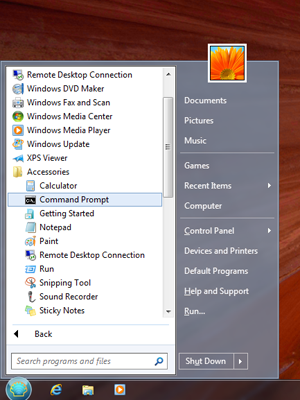 Yesterday I wrote about the forthcoming Windows 8.1 Update 1 and called it a "Frankenstein product stitched together with compromises". My view was based on my experiences with a leaked build of the OS. I didn’t realize, at the time of writing, that others were saying the same things, or that the update was being so roundly criticized online (I try to form my own opinions based on experience rather than get them second-hand).
Yesterday I wrote about the forthcoming Windows 8.1 Update 1 and called it a "Frankenstein product stitched together with compromises". My view was based on my experiences with a leaked build of the OS. I didn’t realize, at the time of writing, that others were saying the same things, or that the update was being so roundly criticized online (I try to form my own opinions based on experience rather than get them second-hand).Since then I’ve read numerous articles on the subject, and ploughed through hundreds of comments, and the general consensus of opinion is that Windows 8.1 Update 1 is, at best pointless, and at worst, a disaster. That seems a little unfair, seeing as the finished version isn’t even out yet, but that’s been the story of the tiled OS since the very beginning -- people haven’t been willing to give it a chance.
With Windows 8.1 Microsoft took the rough, rather half-baked Windows 8, and improved it. With Update 1, the purpose seems to make the OS more appealing to keyboard and mouse users, albeit by providing features no one ever asked for.
I’m fine with inclusion of search and shutdown buttons on the Start screen, although I probably won’t use them. The automatic boot to desktop default on non-touch systems is good, and the ability to show Windows Store apps on the taskbar is fine by me too, but I could live without them. The menu bar at the top of apps -- making them easier for first time users to close -- is okay as well, I guess. The inclusion of a hidden taskbar on the Start screen (I said yesterday it was visible at all times, but it isn’t), and right-click context menus on tiles just feel unnecessary, however.
I am looking forward to Update 1 rolling out, so I can try the finished version properly, but I’m not sure how much the changes will actually benefit me, or other Windows 8.x users, and similarly I’m not sure how appealing they’ll be to users of older versions of Windows.
In trying to woo the mouse and keyboard brigade, Microsoft has made various changes to its OS -- some welcome, others less so -- yet stubbornly hasn’t delivered the one thing that people have been asking for since the tiled OS first debuted -- a traditional Start menu.
As a Windows 8.1 user I’m happy to just use the Apps screen, but I know plenty of people who won’t switch to the new OS because it lacks a Start menu, and there are lots of third party Start menus available, catering to the clear demand. I know it’s an old, tired argument but it seems weird to me that Microsoft has accepted that a large portion of users don’t use the Start screen, and has decided to make the desktop view the default on keyboard and mouse systems, yet not gone that extra mile and added the Start menu that has been demanded across the internet since day one.
It’s like the Start menu is viewed as the ultimate admission of failure at Microsoft, and the company will do anything, customize everything, so long as it doesn’t have to go back to that. And as a result, we have Update 1 that will introduce several slightly odd, frankly unnecessary changes, but not the one that perhaps might have persuaded a decent number of Windows 7 (or XP) users to finally make the switch.
-

Windows 8.1 Update 1 -- A Frankenstein product stitched together with compromises
Publié: février 10, 2014, 2:01pm CET par Wayne Williams
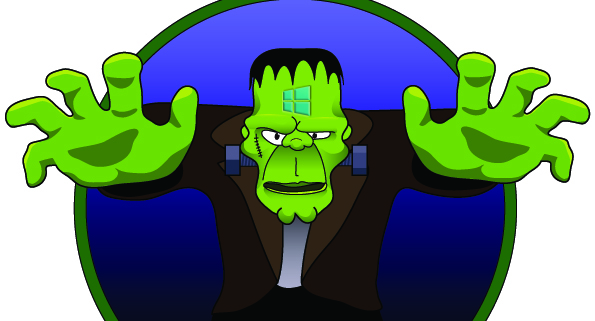
Microsoft’s tiled operating system has always divided the Windows community. There are those who love or at least like it, and those who tolerate, or outright hate it. I tried really hard to like Windows 8, but never did. Windows 8.1 is much more usable for me, and I’m a fan of it now (even though I probably wouldn’t have switched in the first place if my job didn't require me to be running it). But let’s be honest here. "New Windows" was a massive gamble for Microsoft, and it’s one that simply hasn’t paid off.
The devices and services giant bet big on touch screen devices and Windows tablets flying off the shelves, and they haven’t. The PC market has imploded, users haven’t really taken to expensive touch enabled computers, and Windows tablets are nowhere near as popular as iPads or the numerous Android powered alternatives. Users are sticking firmly to older versions of Microsoft’s OS -- Windows 7 and even XP are showing more growth than Windows 8.x. With the forthcoming Windows 8.1 Update 1 Microsoft has rolled over and admitted defeat. Keyboard and mouse users are here to stay, and finally the tiled OS has something to offer them.
There’s no classic Start button and menu in Update 1, but that’s the only thing that’s really missing from the next big update. When the OS runs it will automatically detect the hardware it’s on (something that should have always been the case) and adjust its behavior accordingly. If it’s running on a tablet, or a touch enabled PC, Windows 8.1 will boot straight to the Start screen -- unless you set it not to. If, however, it’s running on a computer with mouse and keyboard, it will boot straight to the desktop.
Yes, that’s right, with Update 1 the fabled Start screen is no longer the default interface for users. Instead, it’s been relegated to the role of a full screen Start menu. And other changes, such as the ability to pin Windows Store apps to the taskbar alongside standard desktop programs, means many users will hardly ever need to see it.
Windows Store apps will behave more like desktop programs too, thanks to the addition of a menu bar at the top of the screen that lets you minimize and close apps and split them left and right. The taskbar is visible the whole time too, even on the Start screen.
Right-clicking on app tiles with the mouse will bring up a context menu, so you’ll be able to customize the Start screen that way (if you’re still using it), avoiding having to drag the mouse all the way to the bottom of the screen to make changes.
The Apps screen gains a new Alphabetical view in Update 1 and you’ll be able to adjust the settings so more apps appear on screen -- useful for anyone with a large monitor or running in a high resolution.
The update will also add new buttons for search and shutdown on the main screen, which again are very much designed for mouse and keyboard users.
The changes in the forthcoming release continue the clear U-turn that Windows 8.1 started. With that update Microsoft added a Start button (of sorts), an Apps view, the ability to have the same wallpaper on the Start screen as on your desktop (to make the transition between modes less jarring), a boot to desktop option and lots of other tweaks that improved the OS immeasurably.
With the next update, expected in April now, Microsoft is finally transforming Windows 8.1 into an operating system that users of Windows 7 or XP could upgrade to without hating it or being totally confused. But will the changes alter public opinion? I’m not convinced. When I covered a leaked early build of Update 1, one comment really summed things up for me.
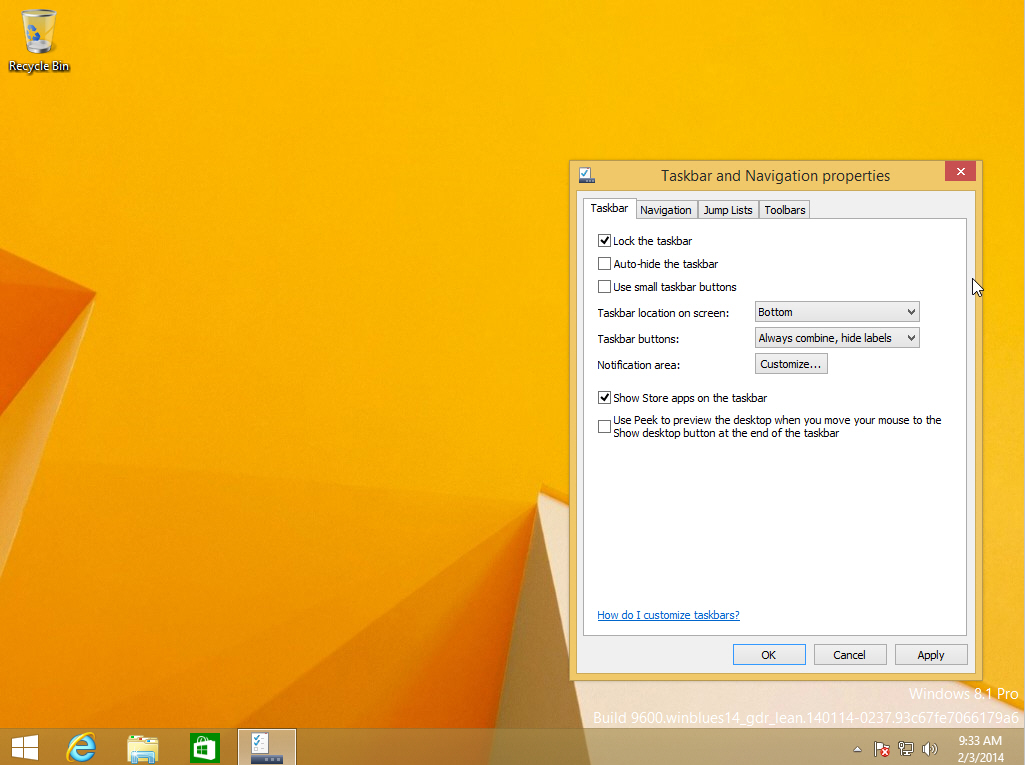 Derekaw said: "The Windows 8 experiment continues. It's like being part of a beta program". And he’s right, it is. Every iteration of the OS moves further and further away from the original release. It feels as if Microsoft is now just trying features out in the hope of finally coming up with something that appeals to everyone.
Derekaw said: "The Windows 8 experiment continues. It's like being part of a beta program". And he’s right, it is. Every iteration of the OS moves further and further away from the original release. It feels as if Microsoft is now just trying features out in the hope of finally coming up with something that appeals to everyone.Don’t get me wrong, having used a leaked early build of Update 1 I really like the changes it offers. As a keyboard and mouse user, it’s a definite step in the right direction and they make the OS easier to use. Although, as was the case when Windows 8.1 landed, users will once again be faced with having to relearn how to use certain elements of the OS.
Windows 8 was always a weird hybrid, a touch interface and a desktop trying -- and just about succeeding -- to coexist. Windows 8.1 Update 1 on a desktop PC looks to be an even weirder hybrid -- a cut and shut. It’s two parts tightly welded together and given a new coat of paint and go faster stripes in the hope of disguising the joins. Maybe I’m just being overly negative here but with all the changes Microsoft has made along the way, Windows 8.x feels like it’s becoming a Frankenstein product stitched together with compromises.
That said, I’m looking forward to the update, but I hope in the next full version of its operating system Microsoft takes everything it’s learned from the very public "New Windows" experiment, and rolls out a fully formed OS from day one.
Photo Credit: Antthony Paul Taylor/Shutterstock
-

Best iOS apps this week
Publié: février 7, 2014, 2:59pm CET par Wayne Williams

Sixth in a series. I'm a massive fan of the Broken Sword series of games, so this week was a great one for me as I finally got to download and start playing the brand new Broken Sword adventure on iOS. I'm pleased to report it doesn't disappoint. Thanks to mobile devices (and Kickstarter and Indiegogo campaigns) classic adventure series are getting a whole new lease of life, which is fantastic. Fans of classic games will be thrilled to know there's a "new" Final Fantasy game out this week too.
With the Winter Olympics upon us, Apple has gathered together a collection of official Sochi 2014 apps, including the Athletes’ Hub which is well worth a download.
As always, if I miss an app that you think should definitely have been included, let me know in the comments below.
Here is my selection for this week.
Paid App of the Week
Broken Sword 5 -- the Serpent’s Curse ($4.99)
Offers in-app purchases.
Fresh off the back of a successful Kickstarter campaign, the classic point and click adventure series is back. This is a brand new game from the original creators, and features all the usual characters including American George Stobbart and French journalist Nico Collard. This time around they’re on the trail of a stolen painting and, as you'd expect from a Broken Sword game, there’s an ancient murderous conspiracy to contend with.
As is often the case with iOS adventures, it’s an episodic release -- part 2 (the conclusion) will be available as an in-app purchase shortly.
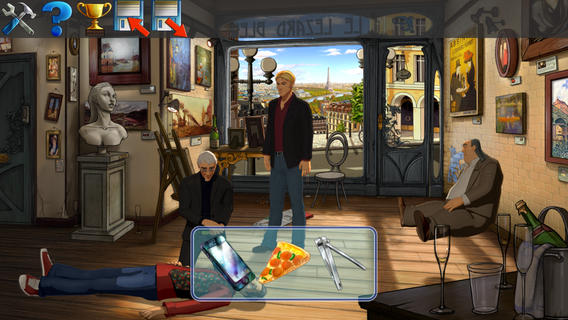
Free App of the Week
The 2014 Winter Olympics are about to start, so naturally there are various apps available to help you follow the action. This official app from the International Olympic Committee lets you easily discover and follow verified accounts of competing Olympians across Facebook, Twitter and Instagram.
You can search by athlete, team, sport and game, and view each competitor’s profile.
The app will also let you create your own custom feed and see what’s trending among the Olympians.
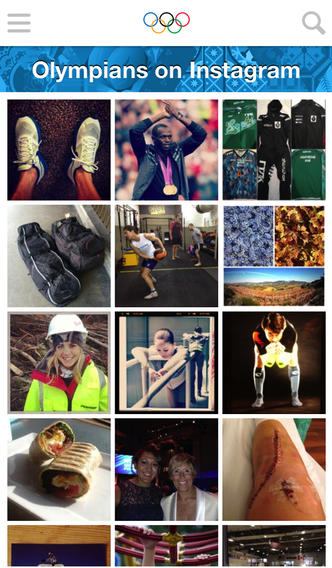
Other Apps
Final Fantasy VI ($15.99)
This installment of the hugely popular Final Fantasy series of games from Square Enix was first released twenty years ago in 1994. The ported version includes content from the 2006 remake and elements have been optimized for touch controls.
Game data is saved to iCloud, so you can easily switch between devices and pick up where you left off.
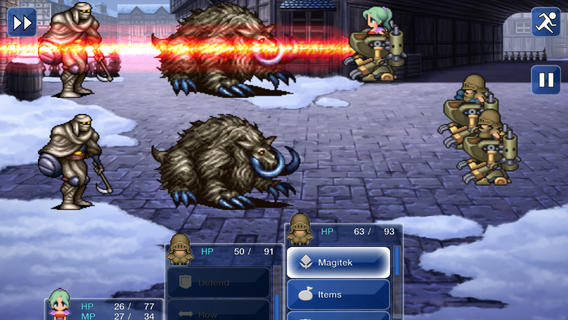
This app uses a mix of photographs and eighteenth century watercolors to allow you to explore Windsor Castle, an official residence of Her Majesty The Queen, and home to British kings and queens for almost 1,000 years.
You can see where the watercolors are located on a map, and compare the paintings with modern day photos. If you visit the castle yourself you can take your own photos and add them to the app.

Offers in-app purchases.
This is a filter camera photo editor that lets you take pictures and apply real-time filters and effects. You can play around with focus and exposure, flash control, anti-shake, use the self-timer and more. The app offers 116 filters, numerous editing features and design tools that will let you add text, stickers and frames to your shots.
Edited images can be shared to the usual services including Instagram, Facebook, Twitter and Flickr.
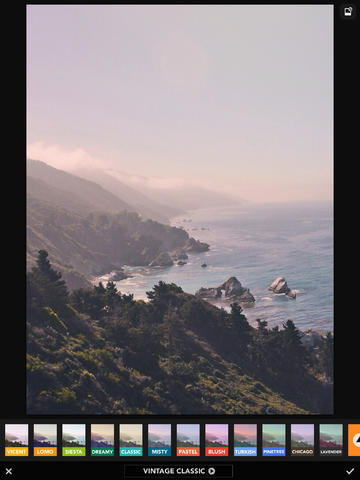
Apple’s App of the Week
This week’s free app from Apple is a racing car game made for children aged 3-9. There are no rules -- drivers can steer through puddles of ice cream, fly off jumps into a lake, or build a pile of objects and plough through them. Or stick to the roads, if they prefer to drive more sensibly (like that's going to happen).
An editor mode lets you arrange your own races and jumps.

-

Microsoft says modern.IE has saved developers 1 million hours of testing time
Publié: février 6, 2014, 5:58pm CET par Wayne Williams

Unbelievably it’s been a year since Microsoft launched modern.IE, a collection of free tools designed to help reduce the amount of time web developers spend on testing their creations. modern.IE offers over 90 virtual machines, a code scanner, three months of BrowserStack, tech teardowns of Microsoft’s Rethink experiences (including NORAD Tracks Santa, Hover, Contre Jour) and more.
To coincide with its first anniversary, Microsoft announces that it has saved developers over a million hours. In case you’re wondering how the tech giant arrived at this rather massive figure, Jason McConnell, Senior Product Marketing Manager at Microsoft, explains:
One of the best ways to easily test across multiple versions of Internet Explorer is through virtualization technology. Since launching last year, over 750,000 developers have used the virtualization tools on modern.ie, saving an average of 1 hour and 20 minutes by using pre-configured VMs and 2 hours and 48 minutes using Browserstack, when compared to building a VM from scratch. Collectively, those developers have saved over one million hours, freeing them to focus on building innovative sites that move the web forward.
If you've ever wondered what you'd do with a million hours, Microsoft has some fun suggestions.
The software giant has also released two new videos which show how modern.IE can save developers time.
Do you make use of the tools offered by modern.IE?
-

Microsoft’s new CEO Satya Nadella to address customers and partners at 12 noon PST -- watch HERE live
Publié: février 4, 2014, 8:49pm CET par Wayne Williams

As you’ll be more than aware by now, Microsoft has a new CEO. Satya Nadella took over Steve Ballmer's position earlier today, and sent out his first email to all employees.
Next up, he’s going to be appearing in a live webcast, addressing Microsoft’s many customers and partners for the first time in his new role.
Announcing the webcast, Microsoft says: "Satya Nadella is strong advocate for customers and partners, and proven leader with strong technical and engineering expertise. At 12 noon PST he will address customers and partners for the first time as CEO during a Customer and Partner Webcast event".
Although he’s unlikely to reveal much, if anything about the company’s future plans, it will be interesting to see what the new CEO has to say, and you can tune into his live address here.
The webcast begins at 12 noon pacific time.
-

Read Satya Nadella's first email as CEO to Microsoft employees
Publié: février 4, 2014, 6:58pm CET par Wayne Williams

It’s a massive day for Microsoft, as long time CEO Steve Ballmer finally steps down to be replaced by Satya Nadella, and Bill Gates switches roles. Both former CEOs will remain on the board, and still have a degree of influence over the company. Quite what the changes will mean for Microsoft long term we’ll have to wait and see.
As is customary with major changes like this, both the incoming and outgoing CEOs have sent company-wide emails to employees. Nadella’s outlines his vision for the future, and includes a quote from Oscar Wilde -- "we need to believe in the impossible and remove the improbable". Here's what he had to say in full:
From: Satya Nadella
To: All Employees
Date: Feb. 4, 2014
Subject: RE: Satya Nadella -- Microsoft’s New CEOToday is a very humbling day for me. It reminds me of my very first day at Microsoft, 22 years ago. Like you, I had a choice about where to come to work. I came here because I believed Microsoft was the best company in the world. I saw then how clearly we empower people to do magical things with our creations and ultimately make the world a better place. I knew there was no better company to join if I wanted to make a difference. This is the very same inspiration that continues to drive me today.
It is an incredible honor for me to lead and serve this great company of ours. Steve and Bill have taken it from an idea to one of the greatest and most universally admired companies in the world. I’ve been fortunate to work closely with both Bill and Steve in my different roles at Microsoft, and as I step in as CEO, I’ve asked Bill to devote additional time to the company, focused on technology and products. I’m also looking forward to working with John Thompson as our new Chairman of the Board.
While we have seen great success, we are hungry to do more. Our industry does not respect tradition -- it only respects innovation. This is a critical time for the industry and for Microsoft. Make no mistake, we are headed for greater places -- as technology evolves and we evolve with and ahead of it. Our job is to ensure that Microsoft thrives in a mobile and cloud-first world.
As we start a new phase of our journey together, I wanted to share some background on myself and what inspires and motivates me.
Who am I?
I am 46. I’ve been married for 22 years and we have 3 kids. And like anyone else, a lot of what I do and how I think has been shaped by my family and my overall life experiences. Many who know me say I am also defined by my curiosity and thirst for learning. I buy more books than I can finish. I sign up for more online courses than I can complete. I fundamentally believe that if you are not learning new things, you stop doing great and useful things. So family, curiosity and hunger for knowledge all define me.
Why am I here?
I am here for the same reason I think most people join Microsoft -- to change the world through technology that empowers people to do amazing things. I know it can sound hyperbolic -- and yet it’s true. We have done it, we’re doing it today, and we are the team that will do it again.
I believe over the next decade computing will become even more ubiquitous and intelligence will become ambient. The coevolution of software and new hardware form factors will intermediate and digitize -- many of the things we do and experience in business, life and our world. This will be made possible by an ever-growing network of connected devices, incredible computing capacity from the cloud, insights from big data, and intelligence from machine learning.
This is a software-powered world.
It will better connect us to our friends and families and help us see, express, and share our world in ways never before possible. It will enable businesses to engage customers in more meaningful ways.
I am here because we have unparalleled capability to make an impact.
Why are we here?
In our early history, our mission was about the PC on every desk and home, a goal we have mostly achieved in the developed world. Today we’re focused on a broader range of devices. While the deal is not yet complete, we will welcome to our family Nokia devices and services and the new mobile capabilities they bring us.
As we look forward, we must zero in on what Microsoft can uniquely contribute to the world. The opportunity ahead will require us to reimagine a lot of what we have done in the past for a mobile and cloud-first world, and do new things.
We are the only ones who can harness the power of software and deliver it through devices and services that truly empower every individual and every organization. We are the only company with history and continued focus in building platforms and ecosystems that create broad opportunity.
Qi Lu captured it well in a recent meeting when he said that Microsoft uniquely empowers people to "do more." This doesn’t mean that we need to do more things, but that the work we do empowers the world to do more of what they care about -- get stuff done, have fun, communicate and accomplish great things. This is the core of who we are, and driving this core value in all that we do -- be it the cloud or device experiences -- is why we are here.
What do we do next?
To paraphrase a quote from Oscar Wilde -- we need to believe in the impossible and remove the improbable.
This starts with clarity of purpose and sense of mission that will lead us to imagine the impossible and deliver it. We need to prioritize innovation that is centered on our core value of empowering users and organizations to "do more". We have picked a set of high-value activities as part of our One Microsoft strategy. And with every service and device launch going forward we need to bring more innovation to bear around these scenarios.
Next, every one of us needs to do our best work, lead and help drive cultural change. We sometimes underestimate what we each can do to make things happen and overestimate what others need to do to move us forward. We must change this.
Finally, I truly believe that each of us must find meaning in our work. The best work happens when you know that it's not just work, but something that will improve other people's lives. This is the opportunity that drives each of us at this company.
Many companies aspire to change the world. But very few have all the elements required: talent, resources, and perseverance. Microsoft has proven that it has all three in abundance. And as the new CEO, I can’t ask for a better foundation.
Let’s build on this foundation together.
Satya
-

Windows 8.x STILL seriously underperforming compared to Windows 7
Publié: février 4, 2014, 2:32pm CET par Wayne Williams
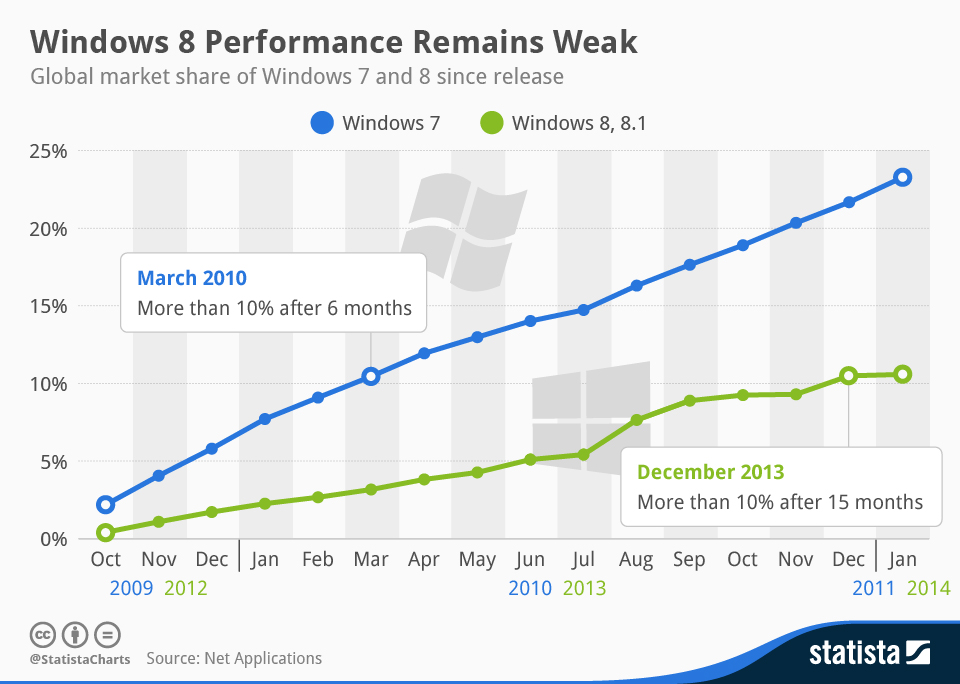
Windows XP gained a little market share in January -- making for a nice, fun headline -- but the real point of that story is how poorly Windows 8.x appears to be doing. Despite being backed by an incredible advertising and marketing push its adoption rate really is pretty awful.
Two months ago Statista compared the global market share of both Windows 7 and Windows 8.x following their respective launches, plotting the results on a graph, and as I said at the time the difference was stark. Windows 7 showed a steep upwards trend, while Windows 8.x appeared to be heading for a plateau. Statista has since updated its chart, and the difference in fortunes between the two operating systems is now even more pronounced.
While Windows 8.x took 15 months to claim over 10 percent market share, Windows 7 broke that barrier six months after it was released, and was well on its way to claiming 25 percent 15 months after launch.
The blue Windows 7 line on the chart shows, as before, a solid rocket like trajectory, while the green Windows 8.x line is tailing off like a sputtering firework. In NetMarketShare’s monthly breakdown of desktop OS market share, Windows 8.x managed to grow by under 0.1 percent in January, which isn’t good news for the tiled operating system. Can Windows 8.1 Update 1 give the divisive operating system the kick it needs? It seems unlikely.
Windows 8.1 was a massive improvement over Windows 8, but no one has rushed to buy it. Where is the upward spike the launch of a new OS should generate (the update was released on October 18 2013)? It’s entirely absent.
As I’ve said before, it’s easy to make excuses for Windows 8.x’s failure. Windows 7 benefited hugely from following the half-baked Windows Vista, and XP users were, in the main, happy to upgrade to the newer OS. Windows 8.x is struggling to follow the hugely popular Windows 7, but the alien interface and negativity surrounding the tiled OS really isn’t helping.
The bump Windows 7 got from Vista is not to be underestimated, but neither is the amount of money Microsoft is pouring into promoting "New Windows". Windows 8.x is viewed, and for the most part promoted, as a touch OS, but with the vast majority of Windows users still using a keyboard and mouse that really isn’t the right move.
With the concessions made in Update 1 for non-touch users (Windows Store apps on the taskbar, a menu bar on apps, and a right-click context menu in the Start screen -- not to mention the rumored boot to desktop default behavior), Microsoft seems finally to be making its new OS more appealing to users of the old one(s). But is it enough, or has the damage been done?
Unless we start seeing commercials showing people using Windows 8.1 on older hardware, with a mouse and keyboard, I don’t think the new OS will be troubling Windows 7’s on-going dominance any time soon…
Photo credit: Igor Kovalchuk/
-

Windows XP showing much stronger growth than Windows 8.x -- Yes XP!
Publié: février 3, 2014, 1:53pm CET par Wayne Williams
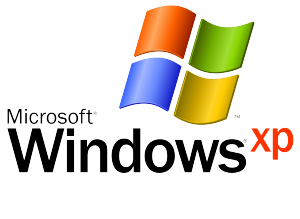 I have to admit I look forward to seeing NetMarketShare’s monthly breakdown of desktop OS market share. The figures always provide a great talking point. You can pretty much guarantee that Windows 8’s share will decline, Windows 8.1’s share will increase, and combined the tiled OS’s growth will be outpaced by one of the older versions of Windows.
I have to admit I look forward to seeing NetMarketShare’s monthly breakdown of desktop OS market share. The figures always provide a great talking point. You can pretty much guarantee that Windows 8’s share will decline, Windows 8.1’s share will increase, and combined the tiled OS’s growth will be outpaced by one of the older versions of Windows.Usually it’s Windows 7 that’s showing the top growth. Sometimes besting Windows 8.x by a tiny amount, other times absolutely trouncing its newer sibling. But this time around, there’s a brand new leader in the growth stakes, and it’s a 13 year old OS that’s set to reach its end of life in April.
Yes, you can forget about XP users switching to Linux, or upgrading to Windows 8.x, because in January the veteran OS actually grew its market share by 0.25 percent. In December XP had a 28.98 percent share, but in January that rose to 29.23 percent.
Windows 8 fell from 6.89 percent in December to 6.63 percent in January, which is to be expected as users continue to upgrade to 8.1 (although you have to wonder why more people aren’t upgrading to the very latest version given it’s a marked improvement -- and free). In the same time period Windows 8.1 rose from 3.60 percent to 3.95 percent. Combined the two flavors of tiled OS grew by 0.09 percent, which is much, much less than in previous months. And, let’s not beat about the bush here, a bloody appalling result for Microsoft which would have been hoping to see solid growth for "New Windows" following the holiday season.
There is some good news for Windows 8.x, and that’s it managed not to get beaten by Windows 7 as well this month. For the first time in half a year, the older OS actually lost market share, dropping from 47.52 percent to 47.49 percent, a fall of 0.03 percent. That doesn’t mean much really -- it's worth pointing out it comes off the back of a stunning 2.62 percent gain last month -- and Windows 7 could well show growth again in February.
Now, let’s be realistic here. NetMarketShare’s figures don’t suggest Windows XP is suddenly going to come roaring back, it’s just a statistical anomaly (although I said that the first time Windows 7 started really outpacing its newer sibling), but you have to smile that with all the effort Microsoft has put into persuading people to jump from Windows XP to Windows 8.x, the ancient OS actually grew market share much faster than its supposed replacement.
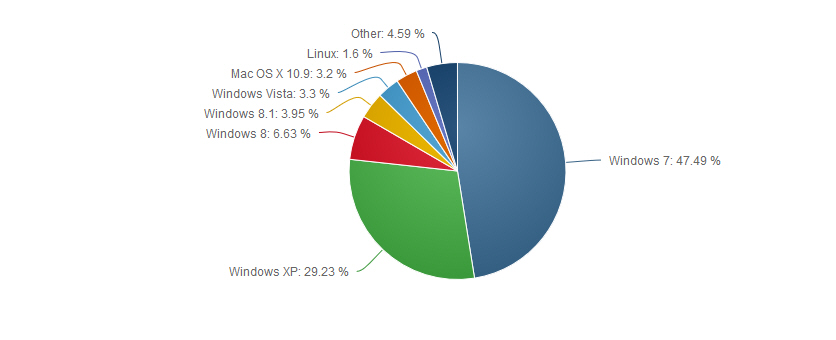
Photo credit: Bevan Goldswain/Shutterstock
-

Windows 8.1 Update 1 leaks online -- This is what's new
Publié: février 3, 2014, 9:18am CET par Wayne Williams

There have been lots of rumors about what to expect from Microsoft’s forthcoming Windows 8.1 update, including that it will allow users to pin Windows Store apps to the taskbar -- a time saving tweak for anyone who avoids the Modern UI but still likes to use apps from time to time. So is it true, and what other tweaks has Microsoft made to its tiled OS?
Well, a version of Windows 8.1 with Update 1 in place has leaked on to the internet, revealing (nearly) all. The 64-bit build is not the final release -- it’s three weeks old -- but it gives us a good look at what to expect from Update 1 which is set to be released next month.
First up, yes you can pin Windows Store apps to the taskbar by right-clicking an app, or holding down on it, and selecting Pin to Taskbar. The Windows Store app is pinned there by default. You can also set the OS to display all running apps on the taskbar, which is really handy.
There are two new buttons on the Start screen next to your username -- Search, which opens the Search charm, and Power, which lets you shutdown, restart, or send your computer to sleep. Two additions that will definitely appeal to first time users.
If, like me, you prefer to have the Apps screen as the default rather than the Start screen, there’s a new alphabetical view which lets you filter apps by letter.
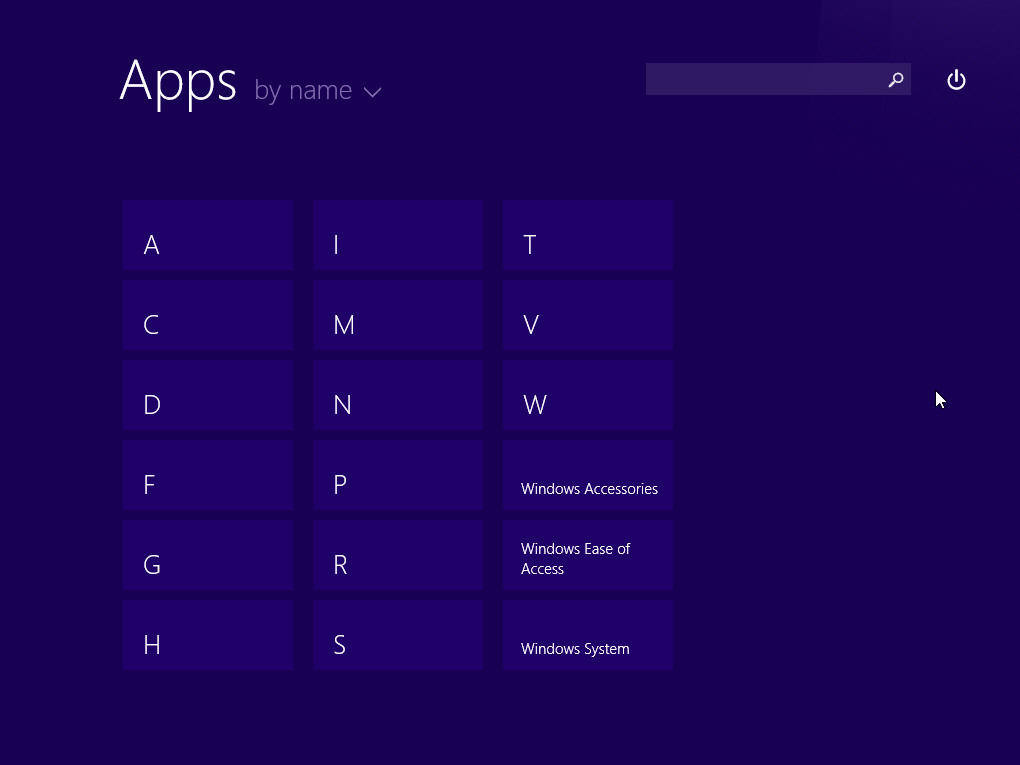
Mouse users can now sort the Start screen in a more traditional way. Right-click an app and a context menu will pop up that will allow you to unpin that item from Start screen and/or taskbar, resize its tile or uninstall it.
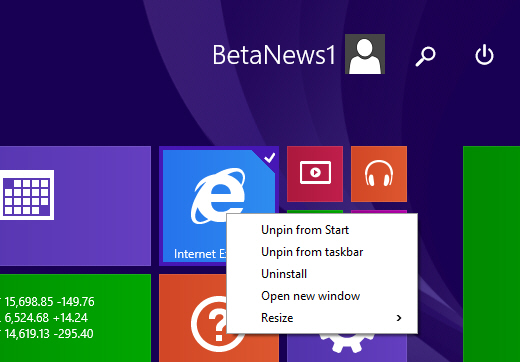
Windows Store apps now come with a title bar, making it easier to minimize or close them, and split left or right. You can also access the taskbar from within running apps, which I personally think will make a huge difference to usability.

Internet Explorer 11 has been tweaked and comes with a new enterprise mode.
One of the rumors regarding Update 1 was that it will make booting to desktop the default option, but that doesn’t appear to be the case in the leaked version. Whether Microsoft will flip that switch in the official release remains to be seen.
So what do you think of the changes? Do you approve? If you’ve yet to upgrade to Windows 8.1 is there enough here to finally persuade you to do so? Sound off in the comments below.
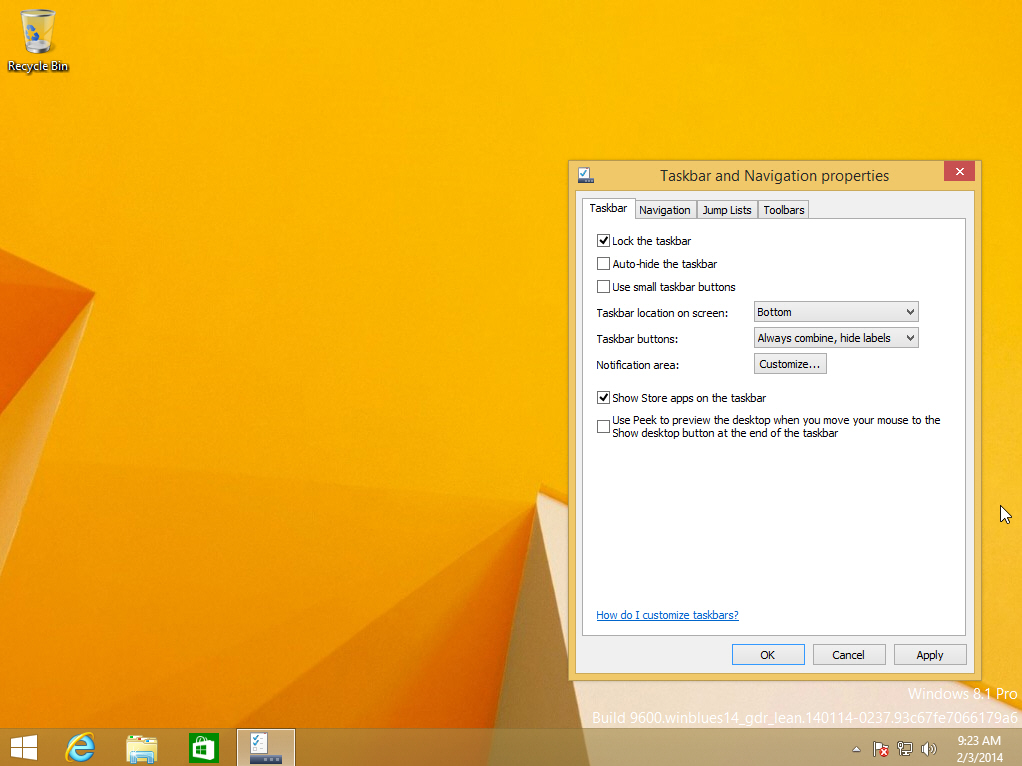
-

Best iOS apps this week
Publié: janvier 31, 2014, 12:29pm CET par Wayne Williams
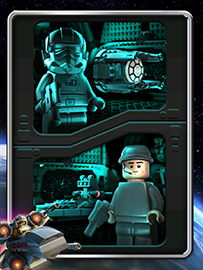 Fifth in a series. A big week for Apple as the company delivered record fiscal first quarter results -- $57.6 billion revenue and $13.1 billion net profit. The tech giant revealed it had shipped 51 million iPhones, an all-time quarterly record, compared to 47.8 million a year-ago, and 26 million iPads, up from 22.9 million in the same period a year ago. Wall Street wasn’t impressed, but that’s to be expected.
Fifth in a series. A big week for Apple as the company delivered record fiscal first quarter results -- $57.6 billion revenue and $13.1 billion net profit. The tech giant revealed it had shipped 51 million iPhones, an all-time quarterly record, compared to 47.8 million a year-ago, and 26 million iPads, up from 22.9 million in the same period a year ago. Wall Street wasn’t impressed, but that’s to be expected.Of course a big part of Apple’s success is the number and quality of apps available for its hardware. As the owner of both iOS and Android devices, I find the apps for the iPhone and iPad to be vastly superior (although there are always exceptions). There’s less garbage, and far fewer ad-riddled apps. Part of that reason is Apple’s strict approval process, and the amount of money it pays to developers -- $2 billion in its fiscal first quarter -- helps too.
The company paid out $10 billion to developers in 2013 (no doubt a huge chunk of that going to Candy Crush Saga developer King), which shows that the App Store remains the best place for developers to make money -- provided they can gain the required visibility of course.
This week there were some great new apps and games, and a number of noteworthy updates.
As always, if I miss an app that you think should definitely have been included, let me know in the comments below.
Here is my selection for this week.
Paid App of the Week
Lego Star Wars: Microfighters ($0.99)
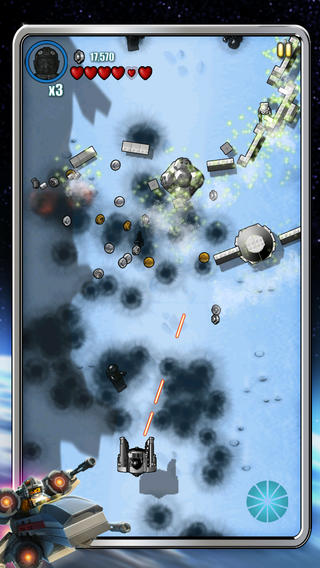 Earlier in the week, Google announced a Chrome tie-in with LEGO, which I described as "awesome". I also said the plastic brick manufacturer really knows how keep "its product modern, with video games like LEGO Star Wars and LEGO Hobbit". And lo and behold, here’s a fresh new Star Wars LEGO game to enjoy.
Earlier in the week, Google announced a Chrome tie-in with LEGO, which I described as "awesome". I also said the plastic brick manufacturer really knows how keep "its product modern, with video games like LEGO Star Wars and LEGO Hobbit". And lo and behold, here’s a fresh new Star Wars LEGO game to enjoy.Lego Star Wars: Microfighters is a retro-style shooter that lets you pilot six iconic Star Wars ships, including TIE fighters and X-wings. You can choose to fly for the Rebellion, or the Empire, and there are 18 levels spread across four planets -- Endor, Yavin, Hoth and Geonosis -- and 35 types of enemies to engage. It's great fun, and well worth the asking price.
Free App of the Week
Owners of Android phones may be familiar with the SwiftKey software keyboard. SwiftKey Note isn’t the same thing, but rather a note-taking app from SwiftKey’s developer, TouchType. It does however, offer the keyboard’s auto-correction and prediction algorithms, making typing and jotting down notes, much quicker. It gets smarter the more you use it too.
You can share notes, and the app offers Evernote synchronization and more. Notes can be tagged and formatted, and you can write in up to three languages at a time.
Other Apps
Offers in-app purchases.
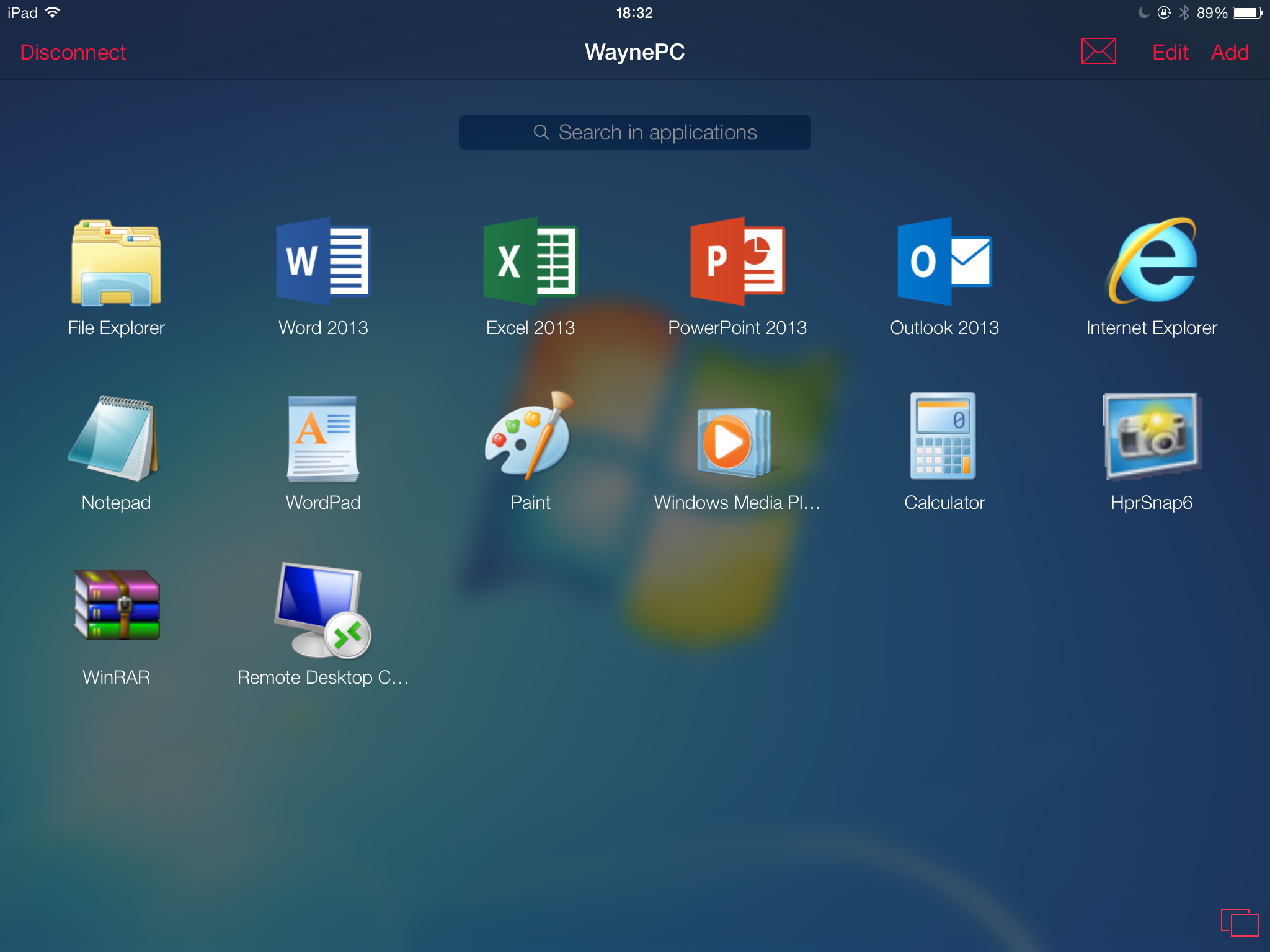
When I’m working away from my PC I’m usually remote accessing it on my iPad using the excellent Parallels Access. I’ve tried other remote access tools in the past, most notably TeamViewer, but this is easily my favorite tool for the task.
The app was updated this week and now sports an iOS 7 look and feel. It offers full support for OS X Mavericks, Windows 7, 8, and 8.1 and gains enhancements for connections in/from corporate networks.
Subscriptions are now per-user rather than per remote computer (and you can use it on up to 10 systems). You get a 14 day free trial of the full version, and can continue to use it in time limited mode once the trial has expired.
7 Minute Workout – Quick Fit ($0.99)
 Offers in-app purchases.
Offers in-app purchases.There are loads of 7 Minute Workout apps in the App Store. This one guides you through the famous brief exercise blast using HD video and voice prompts. There are 12 exercises, with 10 seconds of rest in-between, making it ideal for people who don't have time to spend hours exercising but still want to maintain a certain level of fitness.
If you’re feeling a bit flabby round the middle, there’s a new Quick Abs workout pack available for $1.99.
Launch Center Pro for iPad ($4.99)
This app is like speed dial for everyday tasks. "Launch actions, not just apps", according to the description. Example actions include messaging a friend, emailing someone, launching a favorite website and more. You can chain multiple actions together.
The iPad version is pretty much identical to the iPhone one, just super-sized to make use of the extra screen space.
Offers in-app purchases.
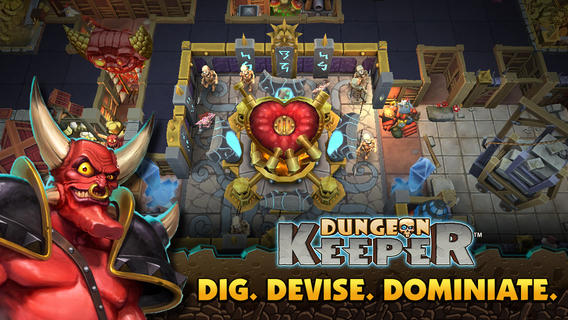
I was a huge fan of the original PC version of Dungeon Keeper so I’ll admit to being excited to see a new version of it on iOS. However, it turns out this is actually more like Clash of Clans than the game I knew and loved.
That said, the new Dungeon Keeper is fun, and the concept -- build the best dungeon and protect it from invading heroes by deploying traps, trolls, demons, warlocks (and numerous other creatures) -- remains the same. It’s freemium and the game nags you to buy virtual gold continually, which spoils the enjoyment of it somewhat.
Offers in-app purchases.
If you log into a lot of password protected websites, this app will save you time by storing your credentials and letting you log in with a single tap. It combines a password manager with a browser, and works with hundreds of sites. If you encounter a site that isn’t supported, you can email the developers and they’ll add it if possible.
Although the base app is free, support for unlimited sites costs $5.99.
Offers in-app purchases.
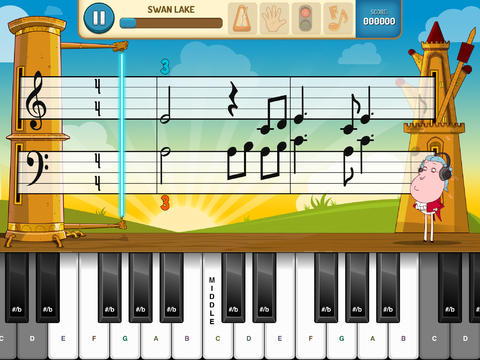
Practice makes perfect when it comes to learning to play the keyboard and this iPad app can really help. Place the iPad on your keyboard or piano and play away -- or use the touch mode. It features hundreds of songs including classics like When the Saints Go Marching In and modern songs like Katy Perry’s Roar.
Although the app is free, you’ll need to buy a paid subscription if you want to get the most from it.

This app lets you create stylish hard cover photo books right from your iPad, using pictures from an iOS device, iPhoto, PC, Dropbox, Facebook, Instagram, or Flickr. Impressed Photo Books also creates a digital version that allows you to add voice recordings and lets viewers leave comments. This is accessible through a QR code printed in the book.
Books you create can be shipped to anywhere in the US or Canada.
Apple’s App of the Week
Offers in-app purchases.
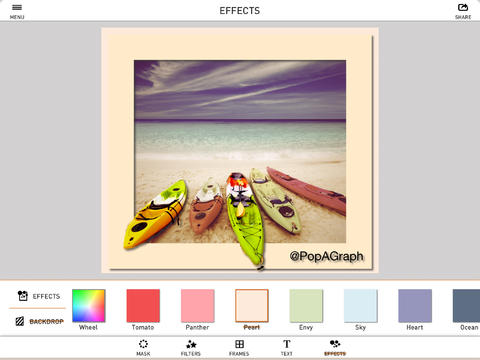
This week’s free app aims to transform your photos and give them the wow factor. It isolates the subject of your picture and lets you make them really stand out. There are loads of effects, filters, frames and adjustments you can apply, and finished images can be shared on Instagram, Facebook, Twitter, Tumblr, Sina Weibo, emailed or saved to the camera roll.
There are additional filters available as in-app purchases.
-

Facebook announces Paper -- its new story sharing app
Publié: janvier 30, 2014, 1:37pm CET par Wayne Williams

Two weeks ago my colleague Mihaita Bamburic wrote a piece on how a Facebook news reader app could give users the best tailored content. Today, Facebook announces Paper, a "new app that helps you explore and share stories from friends and the world around you". It's not quite the app Mihaita was hoping for -- not yet, at least -- but it does sound promising.
Paper is essentially a Flipboard alternative for iPhone (and Android eventually, presumably) that displays content from your Facebook friends, well-known publications, and "emerging voices" in a fullscreen, distraction-free layout.
"Your Paper is made of stories and themed sections, so you can follow your favorite interests. The first section in Paper is your Facebook News Feed, where you’ll enjoy inspiring new designs for photos, videos, and longer written posts. You can customize Paper with a choice of more than a dozen other sections about various themes and topics -- from photography and sports to food, science and design", Facebook says.
According to the social site, storytelling and sharing have been "reimagined" in Paper in order to show stories at their best.
- Everything responds to your touch so you can pick up or thumb through stories with simple, natural movements.
- You can tilt your phone to explore high-resolution panoramic photos from corner to corner, and see faces and other important details up close.
- Fullscreen autoplay videos come to life and bring you deep into the action.
- Beautifully detailed covers make it easy to spot articles from trusted publishers and decide what to read or watch. Articles unfold in the app and appear fullscreen for a focused reading experience.
- When you're ready to tell your own story, you know exactly what your post or photo will look like because you see a live preview before you share it.
The app, which is the first from Facebook Creative Labs, will be available for US iPhone users from 3 February. You can find out more about it, and watch a video of the app in action here.
-

SkyDrive is no more -- say hello to OneDrive
Publié: janvier 27, 2014, 3:42pm CET par Wayne Williams
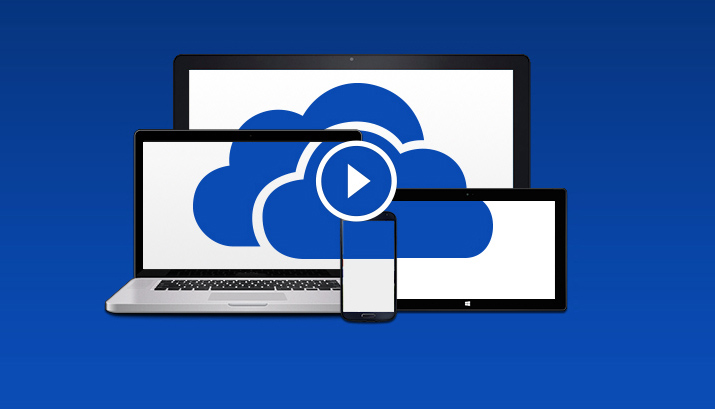
After running into legal problems with the name SkyDrive -- satellite television provider Sky sued for trademark infringement -- Microsoft announced last July it was going to change the name of its cloud storage service. Sky generously gave Microsoft some time to come up with an alternative and today we learn the new name is… drumroll… OneDrive.
Let’s hope One Direction aren’t feeling litigious.
Seriously, though. Why OneDrive? Well, according to Microsoft, "We know that increasingly you will have many devices in your life, but you really want only one place for your most important stuff. One place for all of your photos and videos. One place for all of your documents. One place that is seamlessly connected across all the devices you use. You want OneDrive for everything in your life".
Worried about what the change might mean? Microsoft says, "For current users of either SkyDrive or SkyDrive Pro, you’re all set. The service will continue to operate as you expect and all of your content will be available on OneDrive and OneDrive for Business respectively as the new name is rolled out across the portfolio".
You can find out more about the service, such as when it’s going to be available, by visiting onedrive.com. Register your interest by filling in your email address, and as well as telling you when OneDrive will be available, Microsoft will send you a torrent of promotional emails. Unless you opt out. So maybe avoid passing on your email address, and just keep an eye on the website.
So what do you think of the new name? A good choice, or a rather uninspired one? Sound off in the comments below.
-

Best iOS apps this week
Publié: janvier 24, 2014, 1:45pm CET par Wayne Williams
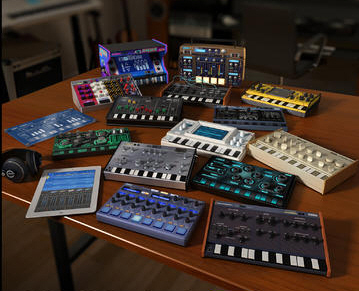 Fourth in a series. Unsurprisingly, after last week’s post-holiday rush of big and important new releases and updates, things have quietened down a little in the App Store.
Fourth in a series. Unsurprisingly, after last week’s post-holiday rush of big and important new releases and updates, things have quietened down a little in the App Store.There’s the usual collection of interesting apps and games, of course, but nothing massively groundbreaking this time around. That said, as ever, I’ve found plenty of apps to take up space on both my iPad and iPhone 5s.
As always, if I miss an app that you think should definitely have been included, let me know in the comments below.
This is my selection for the week.
Paid App of the Week
KORG Gadget ($28.99)
This all-in-one music production studio for iPad offers a collection of 15 different synthesizers and drum machines (referred to as Gadgets) which you can combine to produce your own electronic music. The full list of gadgets on offer can be found here.
Songs you create can be shared on GadgetCloud, as well as on SoundCloud and Facebook and Twitter.
If you have an external MIDI keyboard you can hook it up to your iPad via the Camera Connection Kit and control the app that way.
The app is being offered at a special introductory rate, with 25 percent off the regular price. It goes up to $38.99 on 23 February.
Free App of the Week
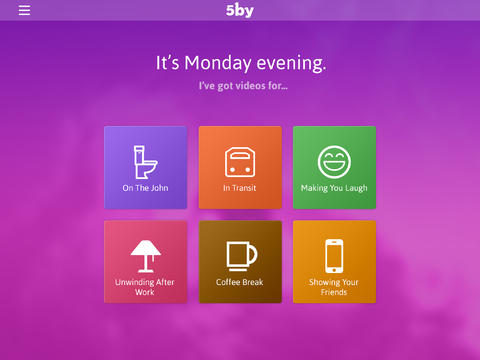
A personalized, curated video app from StumbleUpon, 5by takes into account your mood, personal interests, and time of day, and presents you with the best online videos to watch.
It’s a continuous stream, so you don’t have to do anything except sit back and enjoy the show. You can react to videos using custom emoji’s and also favorite videos you like.
This is version 2.0 and the update includes a new design, better video and various new features.
Other Apps
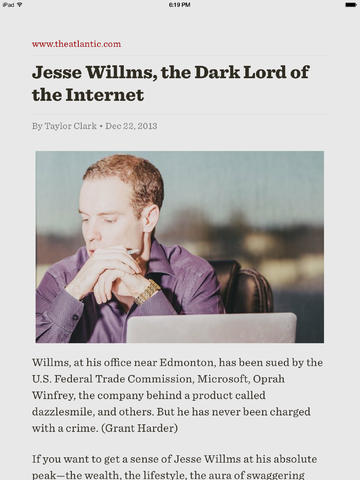
The popular read-it-later app has been completely rewritten from the ground up. Syncing has been fixed, the app is now faster and more reliable, and it’s gained a Recommendations feature. This last inclusion provides a way for users to discover new content, and share items of interest with followers.
In Fear I Trust ($2.99)

A creepy game from Chillingo, In Fear I Trust is described as a "psychological thriller unlike anything you’ve seen before". You have to escape from a facility in which you’re a test subject in a mysterious experiment. The game uses the Unreal Engine and offers elaborate interactive puzzles.
Sherlock: The Network ($4.99)
If you’re a fan of the BBC’s Sherlock television series, you’ll likely enjoy this game which has you navigating the streets of London, helping Sherlock to solve cases.
There are ten cases to tackle in total and the game stars Benedict Cumberbatch as Sherlock Holmes, Martin Freeman as John Watson, and Mark Gatiss as Sherlock’s smarter brother Mycroft.
The game isn’t out in America yet, but should be available on Monday. An Android version is also due soon.
Apple’s App of the Week
Offers in-app purchases.

Where’s my Water? is a fun physics game in which you have to guide water to Swampy the alligator’s broken shower. Where’s My Mickey? takes the same basic idea but builds on it, adding weather mechanics, hidden collectibles and bonus levels. And of course Swampy is replaced by Mickey Mouse and pals.
There are five story episodes to play through, all presented in a classic Mickey style, and iPad owners get 20 extra-large levels to play through as well.
It’s aimed at all ages, although adults might find it a little easy to complete.
-

Who do you trust with your personal data -- and why?
Publié: janvier 23, 2014, 6:41pm CET par Wayne Williams

Earlier today Mike Williams wrote about a cloud storage provider which is offering a whopping 1TB of space for free, plus a further gigabyte for every day you use the service. It’s a stunning offer and one that should have us all signing up immediately. But most of us are familiar with the saying, "if something sounds too good to be true, it probably is", and 1TB+ of space -- for free -- certainly fits that description.
There are reasons for alarm bells to sound. The company behind Yunio, Shanghai Kui Zhi Internet Technology Co., Ltd, is based in China, and its terms of service are currently all in Chinese, so unless you speak the language, or trust Google’s translation, you can’t immediately be sure of what it will, or won’t, do with your data. And, because you’ve likely never heard of the company, how sure can you be that your data is safe, and the firm won’t go out of business?
rsmurf’s comment under Mike’s story summed up my initial reaction:
Sure......... I'm going to use a Chinese data storage service. What could possibly go wrong??????? NOT.
If it was Google, or Microsoft offering such a deal, would we be as wary? (Flickr offers 1TB of free space for photos, but that’s different from just offering space to use how you like). Yet why should we mistrust a Chinese company simply because it’s in China, and thus something of an unknown quantity?
What’s to say Yunio isn’t more trustworthy than American firms who may, or may not, allow government snoopers to rummage through your data.
Obviously cloud storage offered by Google, Microsoft and other tech giants is going to be secure, and we know those firms have the infrastructure in place to ensure there’s little to no chance of data going missing. Those behemoths aren’t likely to go bust any time soon either, which is reassuring, but then Yunio was first launched in 2011, and it seems safe enough as well.
My question to you is this: when it comes to storing your data in the cloud, who do you trust, and why? Do you commit yourself to one company, or is your data uploaded to multiple services to avoid having all your eggs in the one basket.
More importantly, is the promise of huge amounts of free space enough to persuade you to use a cloud storage company, even if you don’t actually know anything about them? Or do you prefer to stick with a company you’re familiar with -- a name you know -- even if the amount of space on offer is a lot less. If Yunio was an American company, would you be more willing to sign up?
I’d love to know your views.
Photo Credit: phloxii/Shutterstock
-

Microsoft offers guides and video tutorials to help business users master Windows 8.1
Publié: janvier 23, 2014, 12:51pm CET par Wayne Williams

A couple of days ago Microsoft released a 20-page expert guide to mastering Windows 8.1, and now it announces the availability of the Windows 8.1 Business User Guide Package. This is a collection of guides and video tutorials aimed at helping business users take full advantage of the tiled OS.
In addition to the new Windows 8.1 Power User Guide, the package offers a 16-page Windows 8.1 Quick Guide for Business (in two formats -- PDF and raw files for printing) and eight short how-to video tutorials. The Quick Guide and videos have all been available previously, but Microsoft promises new support material is on the way.
"This is only the start of the end-user readiness content we will be releasing over the coming months", Alicia Chen, Product Marketing Manager Windows Commercial, says. "In February, we will be releasing a THRU-IT End User Support Toolkit which enables IT departments to communicate, educate, and evangelize the Windows 8.1 experience to end-users. The toolkit will include in-house trainer kits to help IT organizations efficiently deliver Windows 8.1 trainings to users, as well as end-user tip sheet, email template library, posters and flyers designed for IT to create user awareness and excitement to facilitate adoption in Windows 8.1 deployments".
The Windows 8.1 Business User Guide Package is available from the Training section on the Windows Enterprise site.
Photo Credit: Angela Waye/Shutterstock
-

Still think Internet Explorer sucks? Microsoft wants you to 'rethink' that opinion
Publié: janvier 22, 2014, 4:03pm CET par Wayne Williams

Internet Explorer is no longer just the browser you use to download other browsers (even though, for many people, that will always remain the case). These days it’s a decent, fast and standards compliant offering that you don’t have to be embarrassed to admit to using.
Microsoft’s clever, self-deprecating Browser You Loved to Hate campaign did a great job of challenging people’s views and getting them to take a second look at Internet Explorer, and today the software giant launches a new initiative and website, called Rethink, which aims to showcase how Internet Explorer is helping to "create a web that is fast, beautiful and perfect for touch" while also, Microsoft hopes, getting people to rethink their views on the much maligned browser.
The RethinkIE website is a collection of innovative web experiences like Everest: Rivers of Ice, Contre Jour, Red Bull Rampage, Atari Arcade, Hunger Games, and revamped Windows 95 cult classic, Hover. You can read a bit about them, and then launch the site you want in a new window. There’s also a behind the scenes section which shows how some of the featured sites were built.
Although the experiences were created for Internet Explorer 11, they’ll work just as well in browsers like Firefox and Chrome. As Roger Capriotti, Senior Director, Internet Explorer Marketing says:
Rethink is about where the Web has come from and where it can go with a modern browser like Internet Explorer. We’ve taken a different approach than others by helping create experiences that work well not only with Internet Explorer but across any modern browser and device.
To accompany the new site, Microsoft has also released a video which does as much to sell Surface and Windows 8.x as it does Internet Explorer. You can watch it below.
What are your views on Internet Explorer these days?
-

Bill Gates won’t go back to Microsoft full-time, but is willing to 'help out' part-time
Publié: janvier 21, 2014, 9:23pm CET par Wayne Williams
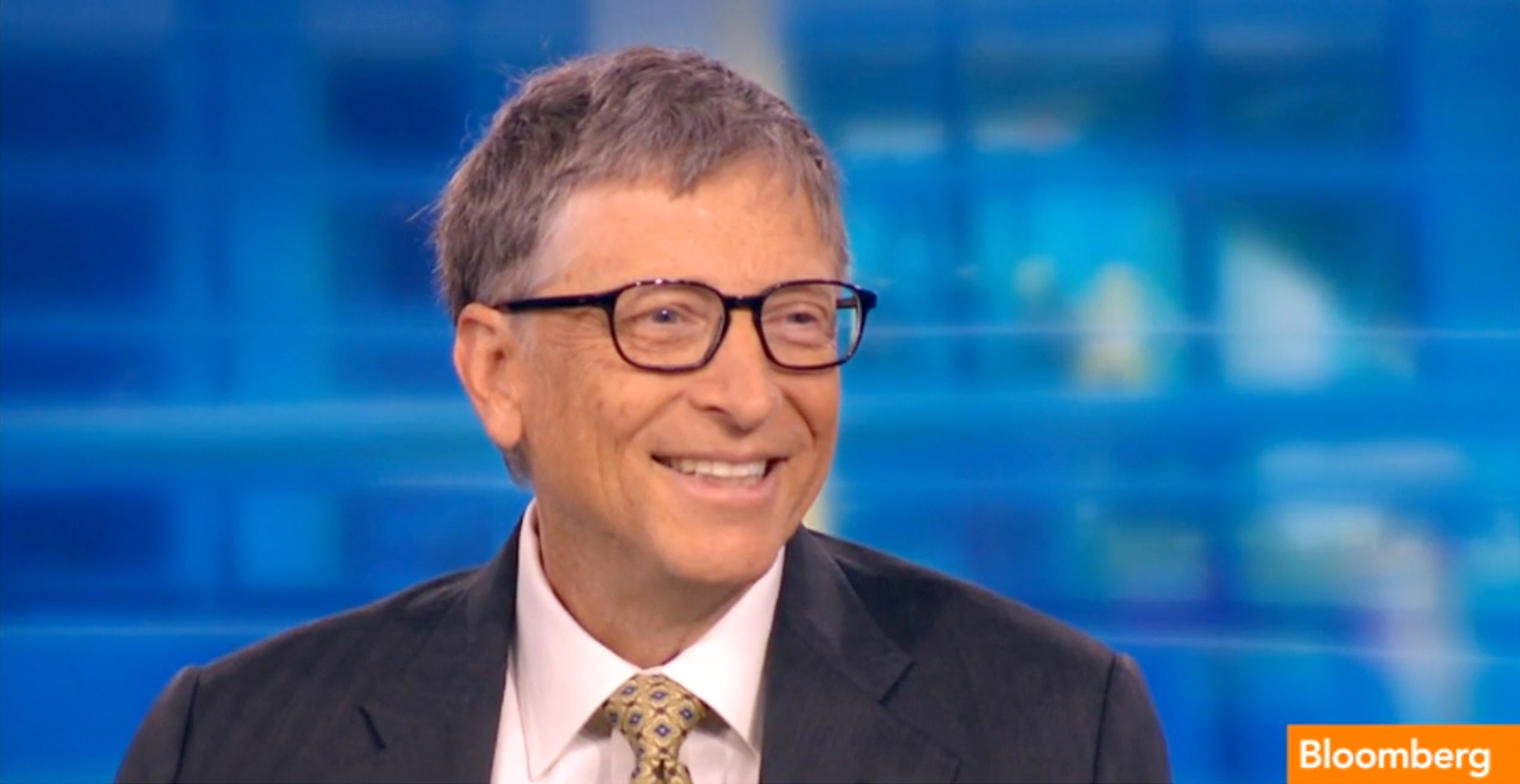
Microsoft Chairman Bill Gates appeared on Bloomberg Television today to discuss his philanthropic work. While he was there the question of whether he would consider returning to run Microsoft full-time was raised. Gates has said previously that his future remains with the Bill & Melinda Gates Foundation, but many people -- including our own Robert Cringely -- would like to see him emulate Steve Jobs and return to once again helm the company he co-founded.
Given how the search for a new CEO is dragging on, and Ford’s Alan Mulally, the most fancied candidate by far, ruled himself out recently, it seemed a possibility that Gates might step in at least temporarily, but judging from his answers that doesn’t appear to be the case.
Responding to Bloomberg TV anchor Betty Liu's question of how involved he is on a day-to-day basis with Microsoft, Bill Gates said: "Well, I'm on the board, and the board's doing some important work right now. The foundation is the biggest part of my time, but then I put part-time work in to help as a board member". On whether he would go back to Microsoft full-time, Gates made his position clear, saying, "Well my full-time work will be the foundation for the rest of my life. My wife Melinda and I are enjoying that. I get to do it in depth. So I'm not going to change, although I'll help out part-time".
When pressed about the search for a new CEO, Gates said, "The board's working on that. There's nothing new to say. But it's a good board". Asked whether the board feels urgency, he said, "Yeah. I think you'd always feel that way. Then again, you want to pick the best person. So they'll move at the right pace".
Betty Liu also asked him about the state of the technology industry now, to which Gates replied, "Well the rate of innovation is faster than ever. Things like understanding speech and vision, taking large amounts of data and understanding that, big, high-resolution screens that'll be on your walls in the office at home. So we're really in a fantastic period where finding information, understanding information is going to get a lot better. And that will lead to productivity. We can simulate things so that new product design and innovation can go faster. We see it in biology, even understanding complex systems and what drugs should be tried out. So I'm a great believer that whether it's helping the poorest or just helping the global economy, technology can solve a lot -- a lot -- of problems".
You can watch the interview with Bill Gates and Bloomberg LP founder Mike Bloomberg below.
Interview and image credit: Bloomberg Television
-

The Wearable Technology Show announces its conference speaker lineup
Publié: janvier 21, 2014, 7:04pm CET par Wayne Williams
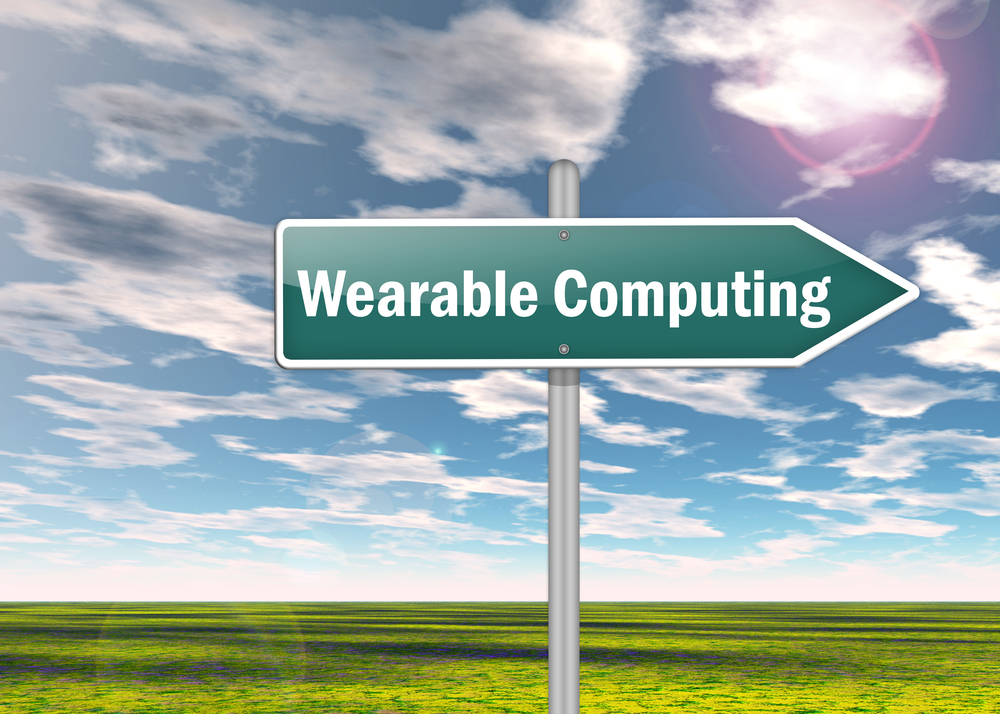
The primary focus of this year’s Consumer Electronics Show (CES) was very much on wearable technology. 2014 may not be the year when wearables hit the mainstream, but it’s clear this is where the future is headed with new smartwatches, smart glasses, fitness bands and the like being developed to keep us constantly connected.
The Wearable Technology Show, being held in London on the 18 and 19 March 2014, is the UK’s first dedicated wearable technology event and its organizers have just announced the speaker lineup for the conference program.
Delegates will hear from more than 70 speakers, with the opening keynote delivered by Steve Brown, Chief Evangelist at Intel. Joining him will be some of the industry’s biggest names including FitBit, Cisco, Samsung, and Misfit Wearables.
As well as briefing delegates on the latest in wearable technology and providing insight into where the current and future opportunities lie, the event will have a product demonstration area where visitors will be able to go hands on with Google Glass, smart watches and launches in every area of wearable technology.
"We are hugely excited to have attracted speakers of this caliber to our launch event", says Lisa Doerr, event director of The Wearable Technology Show. "We are already the biggest and busiest wearables event in Europe and will be adding more speakers and partners in the coming weeks".
The Wearable Technology Show is at the Conference Center, Olympia London on the 18 and 19 March 2014. Tickets for the conference are priced at £800 for a two day pass, and £495 for one day. Discounts are available for groups, educational establishments and other qualifying organizations.
Entry to the expo and the developer hackfest is free, but tickets are strictly limited. For further information visit the Wearable Technology Show website, contact john.weir@edpltd.co.uk or call +44 (0) 1179 323586.
Photo Credit: mindscanner/Shutterstock
-

Microsoft publishes a new expert guide to mastering Windows 8.1
Publié: janvier 21, 2014, 1:35pm CET par Wayne Williams

Windows 8.1 -- or "New Windows" as it’s increasing being referred to -- is much easier to use than its predecessor, thanks to the inclusion of various help and tips built directly into the OS. There is still a learning curve for anyone coming to Windows 8.1 from an older, or different, operating system, but it’s nowhere near as challenging to get to grips with as Windows 8 undoubtedly was.
The new operating system is very powerful, but many people won’t be aware of just what it’s capable of, so to help users uncover the advanced features on offer Microsoft has published a new 20 page PDF guide covering areas such as File Explorer, Task Manager, Internet Explorer 11, Mobility Center, Windows To Go, Miracast, and SkyDrive.
The Windows 8.1 Power User Guide for Business is, as the name says, aimed at business users, but the information it contains will be of use to anyone looking for ways to do more with the tiled OS.
As the description accompanying the guide says:
With the new Windows, you have everything you need to work efficiently. Your familiar desktop is better than ever with advanced functionalities, like the new Task Manager and streamlined file management. Internet Explorer 11 gives you instant and fluid access to the world. And best of all, you can do it all feeling confident that your important data is secure. With the advanced features of Windows 8.1, you can get the most out of your device.
The guide explains how to access the various features, providing details for all input methods -- touch, mouse and keyboard.
You’ll be shown how to customize the taskbar, manage apps and services, use Windows To Go, master IE11, use Miracast to project Windows to a wireless display, protect your device, store stuff in SkyDrive, and sync your settings. There are also full pages devoted to getting the most out of touch, the mouse, and keyboard.
The Windows 8.1 Power User Guide for Business is available to download from here.
-

IObit releases Advanced Mobile Care 4.0 for Android
Publié: janvier 20, 2014, 8:29pm CET par Wayne Williams
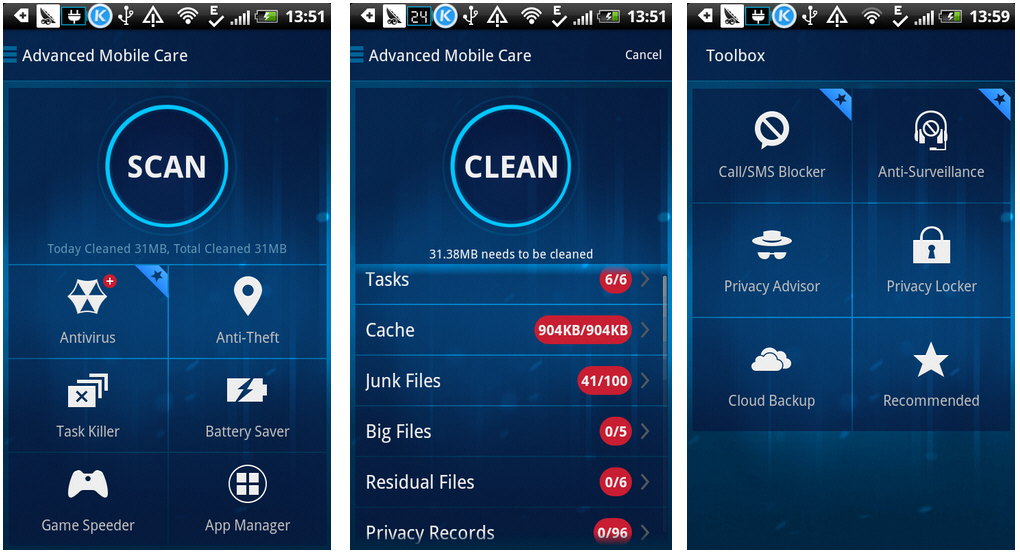
IObit has updated its excellent free all-in-one Android security and performance optimization app, making it safer and faster, and introducing some welcome additional features.
Advanced Mobile Care (AMC) 4.0 gains a streamlined interface and a set of useful new Android tools including a Call/SMS Blocker and Anti-Surveillance.
AMC 4.0 is powered by a new optimization engine which IObit says makes it better able to detect viruses, malware, spyware and suspicious apps on Android devices. The anti-virus database will be updated more frequently now too, keeping users safe from the very latest threats.
Along with the improved antivirus and anti-malware, AMC 4.0 adds Anti-Surveillance which prevents spyware from monitoring or recording your phone calls.
Advanced Mobile Care can clean tasks, cache, junk files, big files, residual files and privacy records, helping to boost your device. IObit claims this can result in speed improvements of up to 200 percent.
The app also now allows users to track down a lost phone and manage backups through http://m.iobit.com.
Advanced Mobile Care 4.0 requires Android 2.2+ and is available to download from Google Play now.
Photo Credit: Kirill__M/Shutterstock
-

Best iOS apps this week
Publié: janvier 17, 2014, 1:55pm CET par Wayne Williams
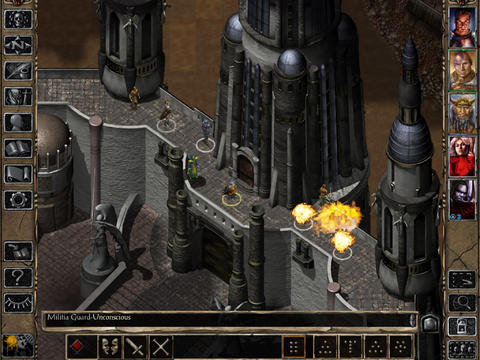 Third in a series. The holiday season is well and truly behind us now and there's lots of big and important new releases and updates in the App Store this week. One of the most significant is a new app from Google which sees the search giant challenging Apple’s own iTunes Store (albeit with some very important Apple-appeasing limitations).
Third in a series. The holiday season is well and truly behind us now and there's lots of big and important new releases and updates in the App Store this week. One of the most significant is a new app from Google which sees the search giant challenging Apple’s own iTunes Store (albeit with some very important Apple-appeasing limitations).Elsewhere, cloud storage service Box announced that it has rewritten its app to make it "super-fast, simpler to use and more immersive", and as an incentive for users to try it out the app now comes with 50 GB of storage for free, which definitely makes it worth the download. You can read more about the update here.
As always there’s the usual mix of great apps and games -- both paid and free -- available for your consideration.
If I miss an app that you think should definitely have been included (and it's a busy week so that's always a possibility), let me know in the comments below. I'm particularly interested in any hidden App Store gems you might have uncovered.
Right, there's a lot of apps to cover, so on with the show.
Paid App of the Week
Horizon ($0.99)
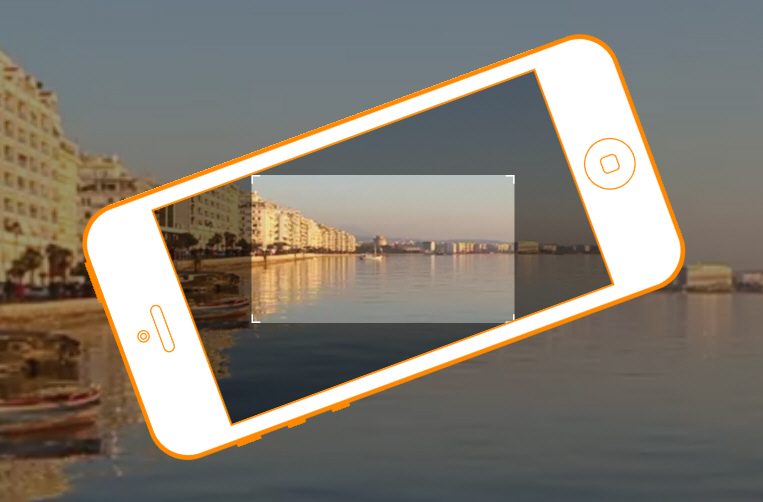
Ever recorded a video on your phone in portrait mode? It looks all right when viewed on the phone's display, but incredibly stupid when watched on a horizontal screen -- like your TV, tablet or PC monitor. It doesn’t matter what the content is, portrait videos on YouTube never look good.
Horizon is a clever app that sets out to prevent you from accidentally shooting video in portrait mode. Once installed it will record all video in horizontal mode, auto-straightening your videos while recording, using your device’s gyroscope. You can hold your phone in portrait mode, sideways or keep rotating it, and the video will always be recorded in the same -- correct -- orientation.
You can add filters, shoot with the front or back cameras and share the videos afterwards.
Free App of the Week
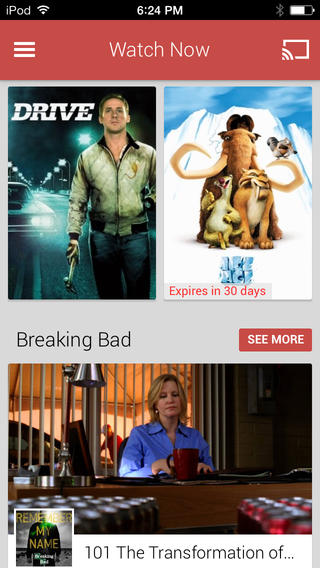 This new app from Google lets you watch movies and TV shows rented or purchased through Google Play. This makes it a sort of competitor to Apple’s iTunes Store. You can’t actually purchase content through the app (there’s no way Apple would allow that), but it’s easy enough to fire up your device’s web browser and do your shopping there.
This new app from Google lets you watch movies and TV shows rented or purchased through Google Play. This makes it a sort of competitor to Apple’s iTunes Store. You can’t actually purchase content through the app (there’s no way Apple would allow that), but it’s easy enough to fire up your device’s web browser and do your shopping there.Now iOS users have a choice of where to buy and watch media from, and Google Play Movies and TV offers a very important advantage -- if you acquire a film or TV show through Google Play you’ll be able to watch it on any iOS and Android devices you own.
The app lets you browse and watch content on your iPhone or iPad, and comes with Chromecast support too.
Other Apps
This actually came out last week, but didn’t make it into my selection then. Jelly is a Q&A app from Twitter co-founder Biz Stone, that lets you use images to find answers to questions. You take a snap, crop, zoom and reframe it as necessary -- draw on the shot if needs be -- then ask your question. It works with all of your existing social networks.
Outread -- Speed Reader ($2.99)
If you’ve ever wanted to learn to speed read, this app can teach you how by "guiding your eyes through text with a rhythmically moving highlighting marker". It promises to reduce your reading time without affecting your comprehension, and supports Instapaper, Pocket and Readability.
A useful app for anyone who needs to have off-the-record chats. It’s like Snapchat but for text, and aimed at the business sector. The messages appear one line at a time and disappear once read. You need to swipe your way through them, which prevents the text being captured in a screenshot.
Polamatic by Polaroid ($0.99)

This Polaroid-inspired camera app has been updated for the first time since 2012, and rebuilt from the ground up. It lets you frame a print -- there's a choice of 36 authentic Polaroid frames -- apply filters (there are 36 of those too), add light leeks and flares for that realistic Polaroid look, and then add a caption to the bottom of the frame, and share the results.
Shadow Blade ($2.59)
Ever wanted to become a ninja? (Of course you have!) Shadow Blade from Crescent Moon Games lets you put your ninja abilities to the test. The action platformer has you guiding Kuro, a "young man on his quest to become the Shadow Blade" though 40 levels, avoiding traps and sneaking past (or over) enemies.
Baldur’s Gate II Enhanced Edition ($14.99)
Offers in-app purchases.
Although it’s one of the more expensive games in the App Store, you do get what you pay for in this excellent iPad RPG. The game is essentially a touch remake of Baldur’s Gate II: Shadows of Amn and its expansion, Baldur’s Gate II: Throne of Bhaal. The area artwork has been remastered from the original renders, and the game features full widescreen support.
The RPG was supposed to arrive in December, but ended up (in the words of Trent Oster, the game’s creative director) getting "stuck somewhere in the App Store plumbing". Still it's here now, and well worth the wait.
Apple’s App of the Week
Offers in-app purchases (although currently free).
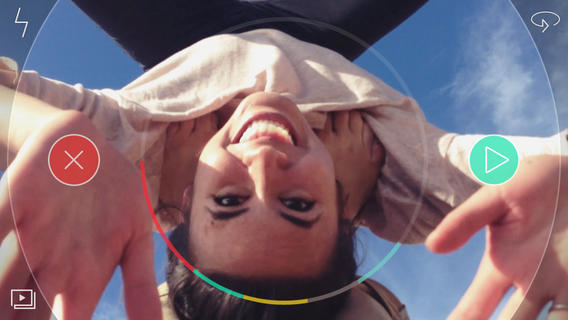
This camera app is a bit like Vine. You press and hold anywhere to record, then release to stop. You can do this as many times as you like to create multiple clips and then apply filters (with dynamic light leaks) during playback. You can add a soundtrack from your library, and share the finished result on Twitter, Facebook, Instagram, iMessage, or via email or AirDrop.
Spark Pro, which usually costs $0.99, is currently free and lets you import and edit videos from your camera roll.
-

Xbox One top selling US console last month, but PS4 remains ahead cumulatively
Publié: janvier 17, 2014, 8:46am CET par Wayne Williams
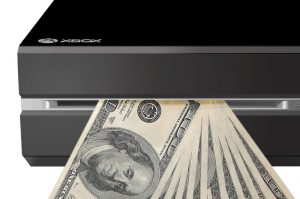 The PlayStation 4 might be outselling the Xbox One globally, but last month in the US Microsoft was the undisputed king of the games console.
The PlayStation 4 might be outselling the Xbox One globally, but last month in the US Microsoft was the undisputed king of the games console.Research firm NPD Group released sales figures for consoles in December (which Microsoft shared), that showed the Xbox One sold 908,000 units during December, making it the number ones games console in the US. And that’s not the only good news for Microsoft.
The Xbox 360 sold 643,000 units, which puts it in third place behind the PS4, meaning Microsoft has the top two selling consoles for each generation. Combined, Xbox consoles sold over 1.5 million in the US in a single month.
Sony didn’t release NPD’s sales figures for its console, but SCE's Director of Corporate Communications, Dan Race, did have this to say: "According to the latest NPD report, PlayStation 4 remains the cumulative leader for next-gen console sales in the US since its launch on November 15. We sold every PS4 available at retail in the US and were out of stock in December due to overwhelming consumer demand".
He also added: "With more than 4.2 million PS4 systems sold worldwide, it’s clear that the PS4′s gaming and entertainment features are resonating with large audiences and we’re doing our best to provide additional inventory in all of the 53 countries where it’s available".
So while Microsoft is claiming a victory, Sony is effectively saying, "you only beat us because we didn't have any consoles to sell".
As I pointed out previously, early sales numbers really don't mean all that much, and we won't have a clear idea of which console is actually selling the best until supply chain issues and the like have been ironed out and the playing field becomes more level.
-

Planes, trains and gigabytes -- modern travelers increasingly reliant on mobile devices
Publié: janvier 16, 2014, 7:18pm CET par Wayne Williams

These days few of us even leave the house without our smartphones. It’s no secret we’re addicted to our mobile devices, checking them constantly, and using them for all sorts of things -- from talking, texting, emailing and taking photos and videos, to browsing websites, checking the weather, accessing maps and playing games.
A new infographic from Mophie titled "A Day in the Life of a Data Traveler" shows exactly how much we rely on our mobile devices when traveling and provides interesting stats on how we use our smartphones while away and the amount of data being consumed per action.
The infographic is included below, so you can take a look for yourself, but some of the highlights include the fact that 82.6 percent of leisure travelers use their smartphones constantly while on vacation, and the average business traveler checks his or her phone an average of 34 times a day (is that all?).
Daily use is broken down to include 23 minutes of talking, 20 minutes of texting, 18 minutes of emailing, 16 minutes of browsing the web and 11 minutes of social networking.
The infographic also includes a guide to US cellular data averages, so you can see at a glance exactly how and why your usage skyrockets while away from home.
Fascinating stuff.
Photo Credit: LDprod/Shutterstock

-

Still running Windows 8.1 Preview? It's time to upgrade -- here's how
Publié: janvier 15, 2014, 6:17pm CET par Wayne Williams

Yesterday, Wednesday 15 January, was the last day you could officially continue to run the preview versions of Windows 8.1 and Windows RT 8.1. From today, if you haven’t upgraded to the full version of the new OS, you’ll see a message telling you to "Reinstall Windows Now". Click the "Get Windows" button to start the upgrade.
You can ignore this warning and continue using the preview, but with a rather major inconvenience -- your PC will restart every two hours. If you’ve only installed Windows 8.1 Preview to test it out, and aren’t using it as your main OS, you may not view this as a massive problem.
Should you decide to upgrade to the full release, you’ll want to install all outstanding available updates for the OS first. Clicking the "Get Windows" button in the message is the easiest way to upgrade, but there are other options.
If you installed the Windows 8.1/Windows RT Preview through the Windows Store, you can upgrade to the final release through the store too. Just click here to open the page you need and start the process. You will need to reinstall all of your apps and desktop programs afterwards.
If you installed a volume license version of Windows 8.1 Preview, Microsoft recommends you install a fresh version of Windows 8.1 Pro or Windows 8.1 Enterprise. The company says: "If you have to upgrade an existing machine, you can do so using volume license media. This can be done by manually running SETUP.EXE from the media, or can be automated by running setup.exe /auto:data". You will still need to reinstall all your software afterwards.
Finally, if you want a copy of the Windows 8.1 ISO for installing fresh on any PCs, you can follow the instructions for getting one, here. You will need a Windows 8 product key to get the ISO, and a Windows 8.1 key to install the OS (as you’ll be performing a fresh install, rather than an upgrade). You can of course also purchase Windows 8.1 as a download or DVD direct from Microsoft.
Photo Credit: Pixel-3D/Shutterstock
-

Run Windows 8 or 8.1 directly from a USB drive on any computer -- for free
Publié: janvier 13, 2014, 2:17pm CET par Wayne Williams
 The Enterprise edition of Windows 8.x has a feature called Windows To Go that lets you create a working version of Microsoft's tiled operating system on a USB memory stick. You can boot into this and be instantly up and running in the new OS from any computer. Which is great -- provided you have the Enterprise edition of the OS and a "certified" USB drive. If you only have the standard version of Windows 8.x then the option isn't available to you.
The Enterprise edition of Windows 8.x has a feature called Windows To Go that lets you create a working version of Microsoft's tiled operating system on a USB memory stick. You can boot into this and be instantly up and running in the new OS from any computer. Which is great -- provided you have the Enterprise edition of the OS and a "certified" USB drive. If you only have the standard version of Windows 8.x then the option isn't available to you.But there is a very easy way you can build a personalized and bootable copy of Windows 8 or 8.1 on a USB drive, for use anywhere. All you need is a USB 3.0 device with at least 13GB capacity (it will run on a USB 2.0 memory stick, but slowly), a copy of Windows 8.x (either an installation disc or an ISO -- you can get the Windows 8.1 ISO by following these instructions but you will need a Windows 8.1 key), and a free partitioning program. Here's what you need to do.
Firstly download AOMEI Partition Assistant Standard Edition (formerly Home Edition). If you have a Windows 8 or 8.1 installation disc insert it into your DVD drive. If you have an ISO file mount it as a virtual drive using a tool like ImDisk (or similar) or you can burn it to disc -- the choice is yours. The program can't create the bootable USB operating system from an unmounted image unfortunately.
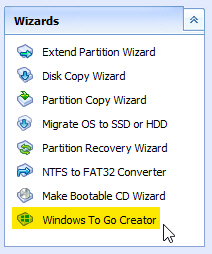 Plug the USB drive into your PC. Run AOMEI Partition Assistant and click the Windows To Go Creator link on the left hand side.
Plug the USB drive into your PC. Run AOMEI Partition Assistant and click the Windows To Go Creator link on the left hand side.Make sure the correct USB drive is selected (any content on the drive will be wiped during the creation process so this is a vital step), and click Browse. Partition Assistant should identify the Windows 8 installation file it needs (named install.wim) but you can browse for the file manually if it doesn't for some reason. You’ll find it in the \sources folder.
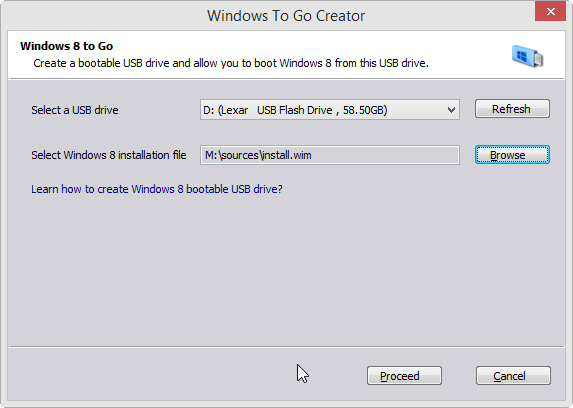
Click Proceed. The creation process will start. Remember, any existing data on the drive will be overwritten so make sure you've backed it up. Depending on the type (and quality) of the USB drive, you might be waiting for a couple of hours or even longer for everything to complete so just leave it to get on with things.
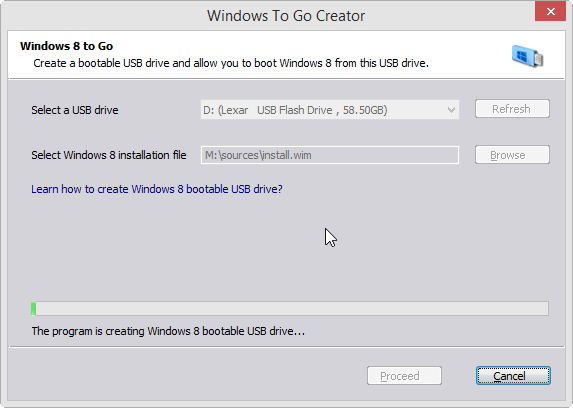
When the task is completed, you can boot into the OS from any computer. The first time you run it you'll be prompted to enter your Windows key and will then need to set up Windows as you would any new installation.
Although it will work like any Windows install, the portable version has some restrictions -- Windows Store isn't available in Windows to Go workspaces, for example.
Photo Credit: Ingvar Bjork/Shutterstock
-

My favorite product from CES 2014 [Wayne]
Publié: janvier 11, 2014, 1:25pm CET par Wayne Williams
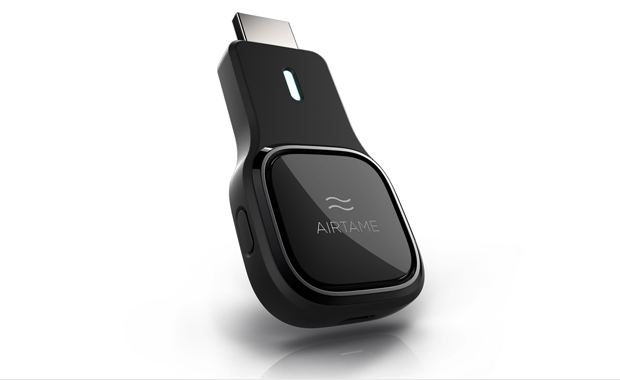
Trying to pick one favorite new product at CES is far from an easy task. The show covers all things tech, and there's a lot of desirable new hardware coming out this year. Like my colleague Alan Buckingham's pick, I didn't want to go for something obvious, like a new TV, a new computer, or some form of wearable, but I also wanted to pick something that I definitely plan to buy in the future.
AIRTAME has been seeking funding on Indiegogo, and hasn't just achieved its goal, it's smashed through it. The creators were seeking $160,000 and have to date notched up just over $636,898 (with seven days still to go) and been nominated as the Best Startup of CES 2014 by Engadget -- which is pretty good going. So what exactly is AIRTAME? Essentially it's a dongle, like Google's Chromecast, that aims to provide "wireless HDMI for Everyone".
You plug it into any TV, projector or monitor with HDMI, and link it to your Wi-Fi network. Once that's done you can throw (or "cast", to use Google's terminology) whatever's on your computer to the device. It works with Windows, Mac and Linux. The possibilities of this truly are endless, but as an example, imagine you're watching a YouTube video on your laptop that you want to share with the rest of the family. Instead of everyone crowding around your small screen, you can show it on the living room TV instead.
You can use it to enjoy games on the larger screen, watch movies, display business presentations, and of course schools could find numerous uses for it too.
AIRTAME doesn't just let you duplicate your screen, it can extend it as well. Or you can send your computer's display to multiple screens at the same time. That could be really useful for businesses.
The creators set a number of stretch goals and the most recent one that was unlocked has seen the hardware upgraded to dual-core. The next two stretch goals will see dual-band Wi-Fi added and -- if it hits a cool $million -- there will be iOS and Android apps released.
Several add-ons will be available for the device, including a HDMI-VGA converter, HDMI-DVI adapter, and USB-Ethernet.
If you pledge $89 now, you can be one of the first people in the world to receive the device (you'll need to pay an additional $15 dollars for shipping if -- as is likely -- you live outside Denmark). The first devices are expected to be sent out in March.
-

Best iOS apps this week
Publié: janvier 10, 2014, 1:31pm CET par Wayne Williams
Second in a series. Big news for Apple this week as the tech giant announces that App Store sales topped $10 billion in 2013, including over $1 billion in December alone. iOS users downloaded almost three billion apps in that one month, which is an incredible figure.
Now the holidays are over, it’s back to business in the App Store, and lots of new apps have been released or updated and there are loads of great new games out too.
As I said last week if you spot a new app that I’ve failed to include please mention it in the comments below, and let us know what you think of any new apps you’ve tried out.
Paid App of the Week
Password Only ($9.99)
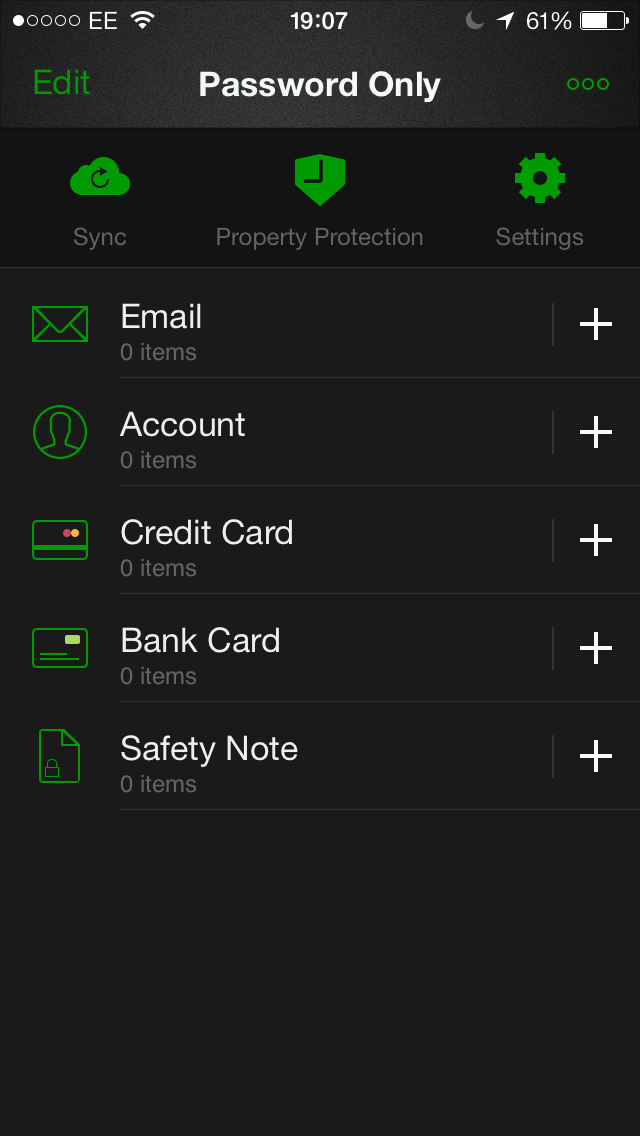 This app is designed to protect your personal information. You can use it to securely store your email passwords, account details, credit card, bank card, driving license, notes and more. Everything is secured ung AES-256 encryption and a single password (that can’t be retrieved if you forget it). Data you enter will be synced and backed up, so you can still access it even if your phone gets lost or stolen.
This app is designed to protect your personal information. You can use it to securely store your email passwords, account details, credit card, bank card, driving license, notes and more. Everything is secured ung AES-256 encryption and a single password (that can’t be retrieved if you forget it). Data you enter will be synced and backed up, so you can still access it even if your phone gets lost or stolen.The app has some other interesting additional features. If you lose your device and someone tries to unlock it unsuccessfully three times, Password Only will take a photo of them and make it available for you view. You can set how quickly the app should lock, clean the clipboard, and delete all the stored data.
The app’s optional Property Protection feature adds an interesting twist. Once activated, you can specify a recipient who will receive access to all the stored contents in the event of anything bad happening to you. You can specify a time frame before this occurs (there’s the option to transfer access immediately) and record a video for the person to watch once they open the app.
Free App of the Week
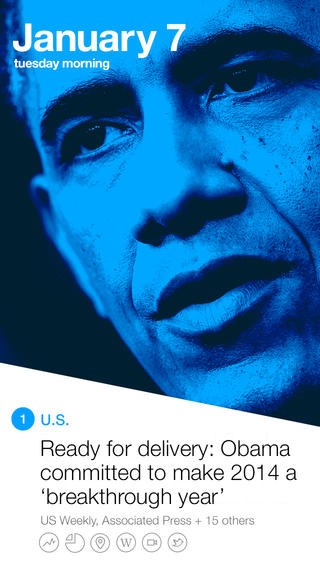 Unveiled at CES, this app displays the top news stories, and is updated twice daily -- so you don’t have to keep checking it to stay abreast of what’s happening in the world.
Unveiled at CES, this app displays the top news stories, and is updated twice daily -- so you don’t have to keep checking it to stay abreast of what’s happening in the world.Or, as Yahoo describes it, "Remember waking up to the local morning news? Coming home to the evening news? Reading a newspaper from front to back page? These formats have been daily habits since the invention of the television and the printing press. We wanted Yahoo News Digest to revisit a content format that when read, led you to a sense of completion and conclusiveness, much like reading the newspaper did".
It’s based on Summly, the summarization app Yahoo acquired last year.
Other Apps
Originally launched in September, this app has been updated to add a significant feature -- support for offline playback. You can now make your playlists available offline and listen to tracks anywhere.
You need an Xbox Music Pass to use it.
Duke Nukem: Manhattan Project ($1.99)
Offers in-app purchases.

Duke Nukem II made its debut in the App Store last year, and now the original ass-kicking action hero returns in this port of a game that was originally released for Windows back in 2002.
Duke’s challenge this time around is to rid New York of an army of bloodthirsty mutants by employing W.I.N. (Weapons, Insults and Name-Calling). There are nine new weapons on offer, including the G.L.O.P.P. (Gluon Liquid Omega-Phased Plasma) Ray, Pipe Bomb, Pulse Cannon and the almighty "press-to-kill-everything" X-3000.
Joe Danger Infinity ($2.99)
Offers in-app purchases.
The famous stuntman has been shrunk down and now faces a whole new set of challenges and dangers in his tiny world.
There are new vehicles -- including motorbikes, cars, airplanes, a tank and an out of control firework -- and hundreds of new levels to play through.
The Johnson & Johnson Official 7 Minute Workout App
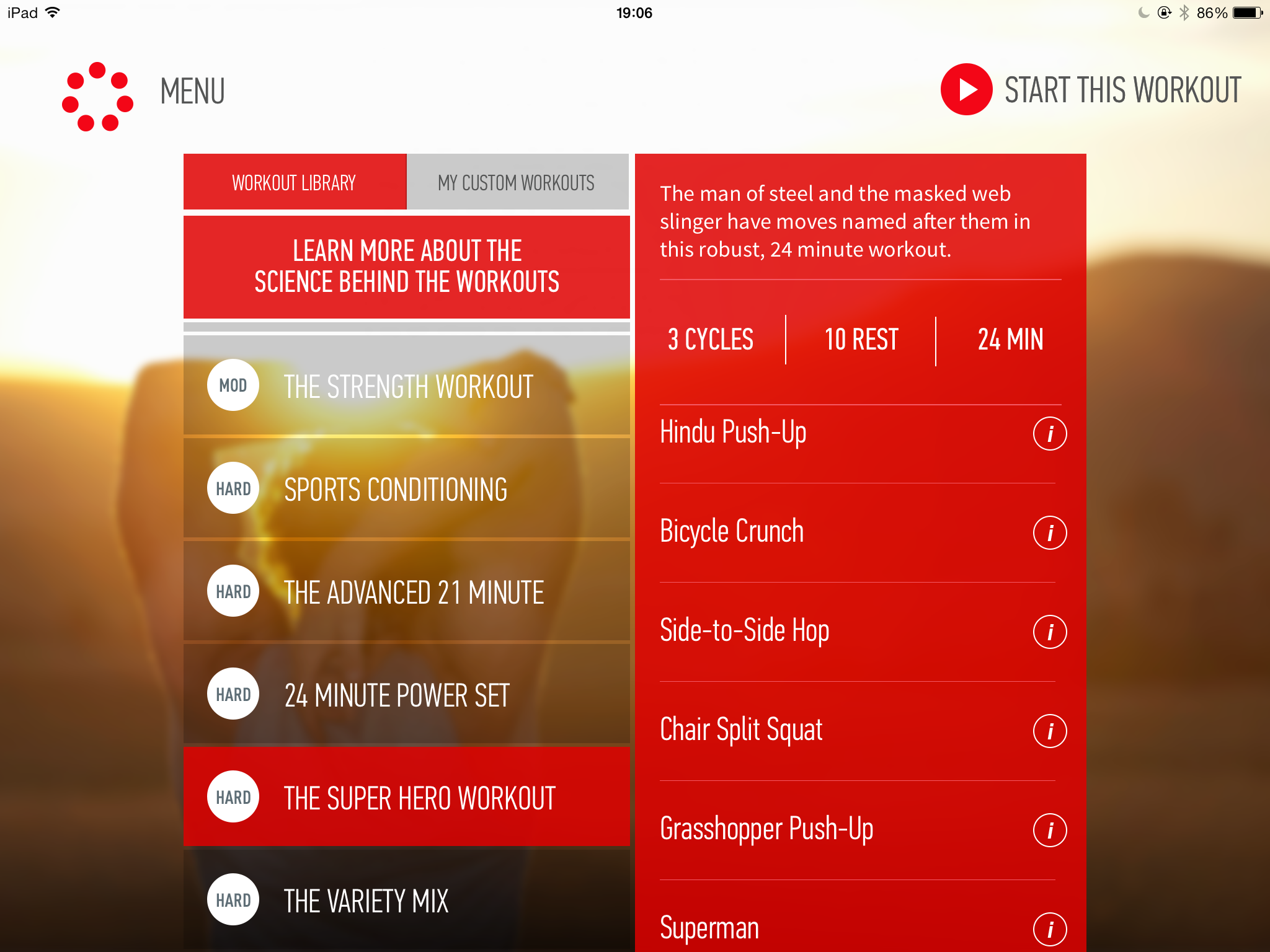
There’s no shortage of seven minute workout apps (Fitstar even offers this as one of its free sessions), but this is the official "7 Minute" app -- not that the official tag makes any real difference. As well as the popular seven minute workout (which runs you through a series of short exercise bursts) there are 12 additional free workouts that can be customized and modified to create more than 1,000 variations. These include the Beginner 9 Minute Workout, Core Workout, Strength Workout, Super Hero Workout and Adventure Workout. The additional choices all require more than seven minutes (the longest requires 27 minutes of your time).
The app is coming to Android on 21 January.
Originally available for the iPhone this calendar app -- which links with social networking services like Facebook and Twitter -- is now available for iPad. There’s a new Week view (which is also available for iPhone) and background updates. The updates occur every hour by default, so won’t miss anything important.
Apple’s App of the Week
Offers in-app purchases.
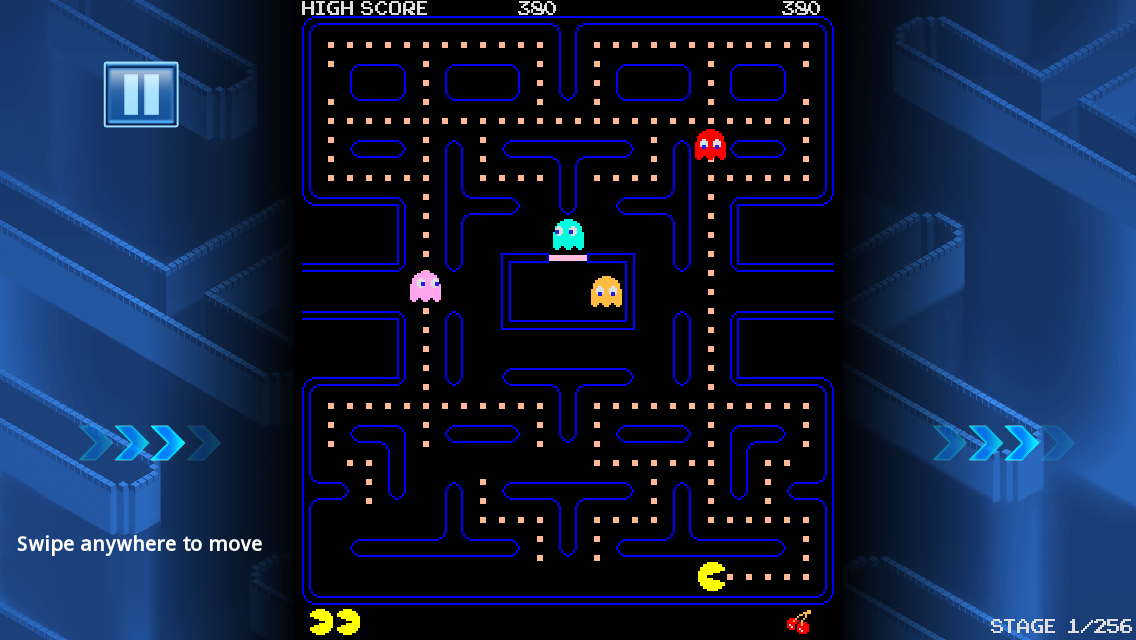
The arcade classic is free this week, and needs no introduction. As well as the standard maze there are eight alternative designs you can try and buy.
The game offers two control methods -- you can swipe your way around the maze or use the onscreen joystick.
-

Xbox One vs PS4 -- the truth behind the numbers
Publié: janvier 8, 2014, 7:26pm CET par Wayne Williams
 Yesterday, I reported that the PlayStation 4 is massively outselling the Xbox One. Inevitably, this sparked a debate in the comments. Is the PS4 really outselling the Xbox One? Yes, unquestionably -- the numbers speak for themselves. But at the same time there are lots of factors that should be taken into account which I didn’t cover in my original post.
Yesterday, I reported that the PlayStation 4 is massively outselling the Xbox One. Inevitably, this sparked a debate in the comments. Is the PS4 really outselling the Xbox One? Yes, unquestionably -- the numbers speak for themselves. But at the same time there are lots of factors that should be taken into account which I didn’t cover in my original post.Price (which I did mention) is a big factor in these uncertain financial times, and the PS4 is $100 cheaper than its rival. But the number of markets and supply chain issues all also have a huge part to play.
Firstly, the main thing to note is sales derive from supply. Any product -- be it a games console, a smartphone, or a pair of shoes -- can only be sold if it’s made available to buy in the first place. If one store has a thousand PlayStation 4s in stock and it sells five, and another store has three Xbox Ones and it sells them all -- there are two angles that can be reported. The PS4 has sold more than the Xbox One, but the Xbox One has sold better than the PS4.
Take away the knowledge of stock -- there are two stores, one selling the Xbox One and one selling the PlayStation 4 -- and the story appears black and white. Sony’s console has sold more than its rival.
Without knowing how many items were made available to buy in the first place, the truth is it’s impossible to say at this juncture that one console is selling better than the other, only that one console has sold more.
We know (because Microsoft has said so) that the Xbox One is on sale in 13 countries. The PS4 is on sale in 48 countries. So from that we can determine that there are more places where people can buy Sony’s console, and therefore you would expect it to sell a lot more. That the PS4 has only shifted a million extra consoles than the Xbox One, despite being in nearly four times as many countries, suddenly makes Sony’s "victory" seem rather hollow.
But switching things around again, those 48 countries include lesser territories, such as Nicaragua, Uruguay and Kuwait, and we don’t know how many consoles there are in each country. Sony could have two consoles in the whole of Oman and still include it in the list.
Similarly, while Xbox One might be in significantly fewer countries, they are places where you’d expect more consoles to be sold, and Microsoft might have more consoles there than Sony has. If there are more Xbox Ones than PlayStation 4s for sale in the US, you would expect Microsoft’s console to rack up better numbers in that territory. Yusuf Mehdi, Corporate Vice President of Marketing, Strategy and Business, Xbox said the Xbox One had "become the fastest-selling console in the US during our launch month in November". (I've asked NPD for some independent US Xbox One and PS4 sales data and will update this post when I get it).
The PS4 is likely to sell phenomenally well in Japan when it finally comes out there in February and that home advantage will allow Sony to extend its lead in the number of consoles sold so far.
Sony or Microsoft could "win" the battle by flooding the market with their consoles, but that would be bad business of course. There’s no point in reporting massive sales if you’re also going to report huge financial losses and left over stock (or worse still poor sales and huge financial losses due to surplus stock -- as was the case with the original Surface RT).
And then there’s the issue of supply being able to keep up with demand. If neither company can produce enough consoles to match demand, then the early winner will be the firm which manages to get more units into the supply chain.
Summing Up
So what does this all mean? Essentially that the PlayStation 4 has sold a million more consoles than the Xbox One, but until both Microsoft and Sony provide a breakdown of stock and sales by territory (which isn’t going to happen), there’s no way of saying who is "winning" at this point. And ultimately, if past history is anything to go by, sales will likely balance out in the end anyway, with the Xbox One selling better in the US, the PS4 selling much, much better in Japan, and both consoles doing about the same numbers in total.
You can view an interesting breakdown of past console sales at VGChartz.
Photo Credit: iQoncept/Shutterstock
-

New infographic reveals the top gadgets and tech of 2013
Publié: janvier 8, 2014, 12:47pm CET par Wayne Williams
 We’re a week into the New Year, a time to look to the future, and all the news flooding out of CES has us excited for what’s coming up. But that’s not to say we can’t still take some time to look back on 2013 -- a year that brought us some great (and not so great) tech.
We’re a week into the New Year, a time to look to the future, and all the news flooding out of CES has us excited for what’s coming up. But that’s not to say we can’t still take some time to look back on 2013 -- a year that brought us some great (and not so great) tech.FinancesOnline.com has created a new infographic summing up 2013 in tech launches and featuring the best smartphones, tablets and other gadgets. Each of the included devices has been sorted into the following categories:
- Winners: They’re a cut above the rest. Best in class. Clear standouts.
- Contenders: Would have been winners, but beaten to the tape by millimeters.
- Game changers: There’s something to them that might upset the old order and start a whole new way of doing things.
- Clunkers: Bright ideas when they were rolled out, but consumers didn’t think so.
It’s an interesting list, and while I agree with many of the winners, I know some of the conclusions will have BetaNews readers up in arms.
Is the iPhone 5s really the best smartphone ever made (I own one, so would have to say yes) and does Sony’s PS4 deserve to take the crown from Microsoft’s Xbox One as the best gaming system? Which mobile OS is better -- Android 4.4 KitKat or iOS 7? Each has its merits, certainly.
The infographic also looks to the future and seeks to answer questions such as which smartphone will be the game changer this year, and will 2014 be the year when wearable technology finally makes it big?
Browse the infographic below and then let me know what you agree or disagree with.
Photo Credit: Sashkin/Shutterstock

-

PS4 massively outselling the Xbox One
Publié: janvier 7, 2014, 7:54pm CET par Wayne Williams
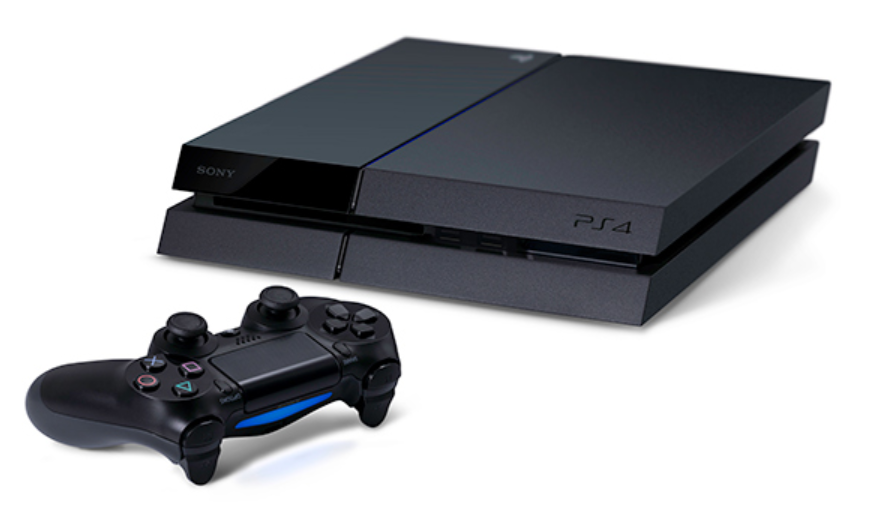
A couple of days ago, Yusuf Mehdi, Corporate Vice President of Marketing, Strategy and Business, Xbox, announced that Microsoft had sold over three million Xbox One consoles to date, across 13 countries. "It’s been incredible to see Xbox One selling at a record-setting pace for Xbox, and we were honored to see Xbox One become the fastest-selling console in the US during our launch month in November", he said. A million consoles were purchased on 22 November -- launch day -- and the second million was racked up 18 days later.
However, while Microsoft still has plenty to celebrate, Sony’s just dropped a rather large bombshell at CES. Its rival console is not only selling slightly better -- it’s selling an awful lot better.
Sony’s CEO Andrew House, took to the stage to announce, as part of his keynote speech, that having sold over 2.1 million units in just two weeks, the PlayStation 4 has now hit 4.2 million sales -- in other words, it reached the two million mark before the Xbox One and has now picked up a million more sales than its rival. That’s some going.
Of course the battle is far from over. The Xbox One has some excellent games coming out soon, including the stunning (and Xbox and Windows exclusive) Titanfall. It’s also worth mentioning the price difference -- the Xbox One retails for $499, while the PS4 is $100 cheaper, which will have had at least some impact on the sales figures.
-

Apple's App Store sales top $10 billion in 2013
Publié: janvier 7, 2014, 3:29pm CET par Wayne Williams
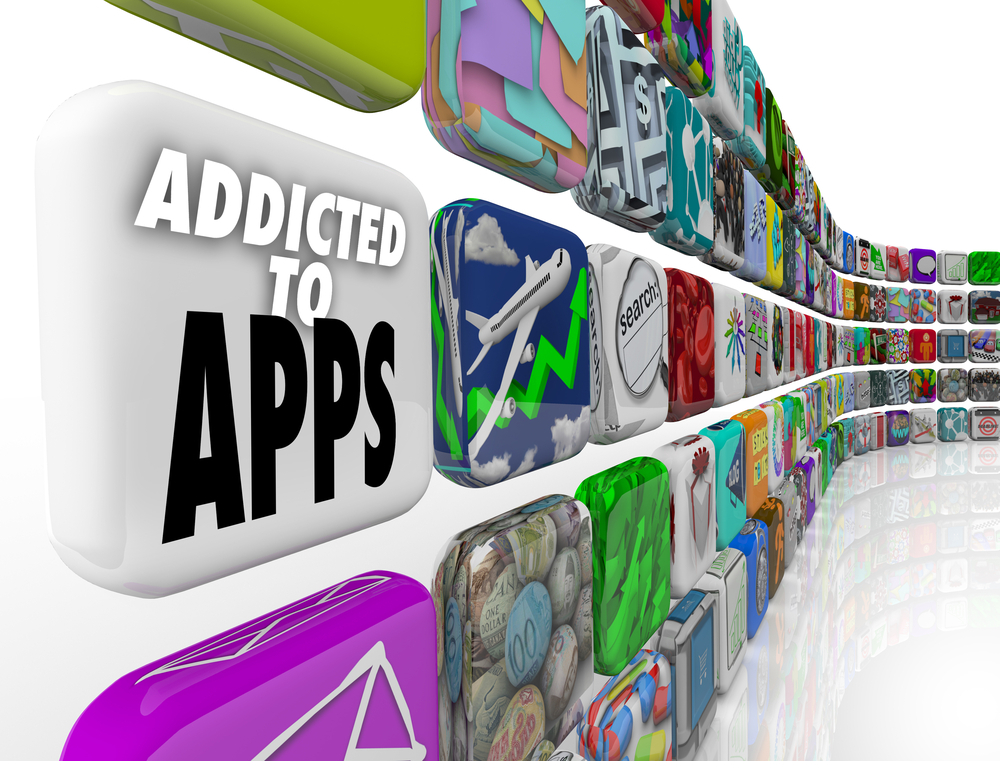
While the rest of the tech world is announcing hot new products at CES, Apple has chosen this time to reveal some app sales figures in the hope of generating a little press of its own. As you’d expect the numbers it’s offering today are pretty spectacular.
In December iOS users downloaded almost three billion apps, which Apple says makes it the most successful month in the history of the App Store.
Not only that, but customers spent over $10 billion on iOS apps in 2013, including over $1 billion in December alone. Apple also revealed that developers have now earned $15 billion from their endeavors.
"We’d like to thank our customers for making 2013 the best year ever for the App Store," says Eddy Cue, Apple’s senior vice president of Internet Software and Services. "The lineup of apps for the holiday season was astonishing and we look forward to seeing what developers create in 2014".
The App Store now offers more than one million apps across 155 countries around the world, with more than 500,000 of them native apps for the iPad.
Photo Credit: iQoncept/Shutterstock
-

SteelSeries Stratus is a console-style wireless controller for iOS 7
Publié: janvier 6, 2014, 9:47am CET par Wayne Williams
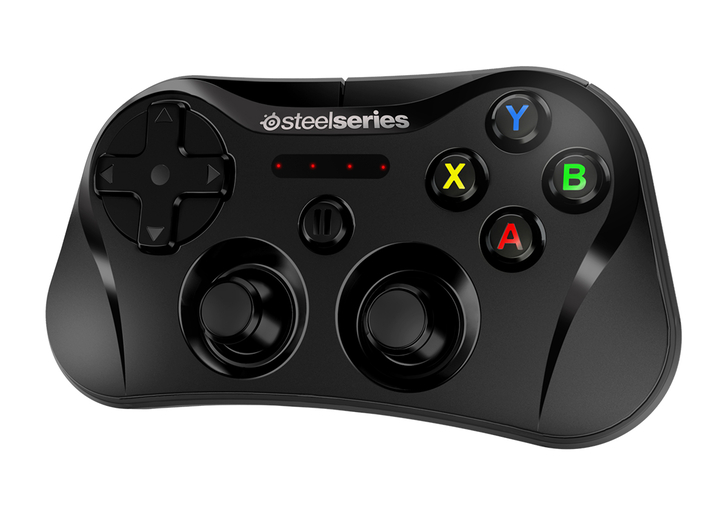
There are some near console-quality games available on the iPad, so it makes sense to have a console grade controller to play them with. Gaming peripherals and accessories maker SteelSeries today introduces the Stratus, a wireless gaming controller specifically designed for devices running iOS 7.
The controller, which claims 10+ hours of battery-life (and takes two hours to charge), connects to your iPhone or iPad using Bluetooth, freeing up Wi-Fi so you can play the games on the big screen via AppleTV using AirPlay Mirroring.
"The Stratus Wireless Controller, the first wireless gamepad controller ever to be supported in iOS 7, forever alters the mobile gaming landscape," says Bruce Hawver, SteelSeries CEO. "With Stratus, gamers have easy and direct access to a growing roster of great games on iPad that were intended for an immersive, controller-enabled experience. We’re incredibly excited to be the first gaming peripherals company to develop a standalone controller for iOS devices and are thrilled to see an abundance of high quality game titles rolling out from publishers everyday".
The Stratus Controller features the usual console-style layout with a pressure-sensitive directional pad (D-pad), four pressure-sensitive action buttons, four pressure-sensitive shoulder buttons, and dual analog sticks.
Up to four gaming controllers can be connected to an iPhone or iPad at once, allowing for multi-playing gaming.
The SteelSeries Stratus Controller is available beginning today for pre-order on SteelSeries.com for $99.99 MSRP.
-

Lenovo unveils ThinkPad X1 Carbon, its ultra-light 14-inch Ultrabook
Publié: janvier 6, 2014, 9:22am CET par Wayne Williams
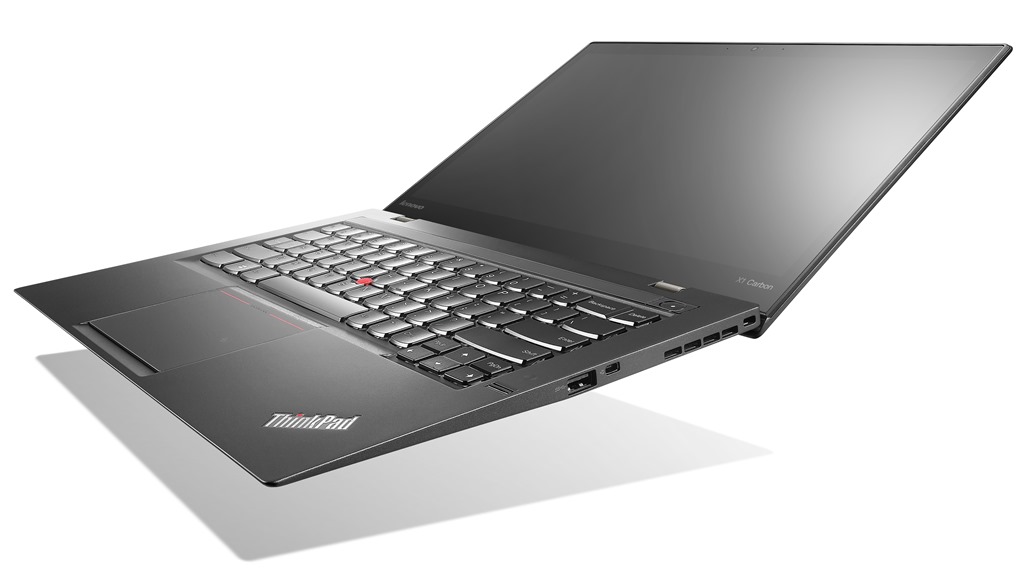
Lenovo is making lots of announcements today, chief among them being the new ThinkPad X1 Carbon 14-inch Ultrabook. Designed using carbon fiber (which is lighter than magnesium and aluminum but stronger than both), the X1 Carbon weighs just 2.8 lbs, making it the lightest 14-inch Ultrabook in the world.
The X1 Carbon features the Adaptive Keyboard, which dynamically adjusts based on the software or application being used, and also integrates voice and gesture control. The PC comes with an improved ColorBurst Display which, according to Lenovo, "provides sharper, brighter images at higher resolutions with better viewing angles for a superior visual experience".
The new Ultrabook touts 70 percent improvement on battery life over the previous model, lasting up to 9 hours, and comes with Lenovo’s Rapid Charge technology that makes it possible to get an 80 percent charge of the battery in under an hour.
"Lenovo continues to push the boundaries of design and technology as we aspire to create the best products in the market. Our obsession in the pursuit of perfection is evident with these smarter devices designed to enhance the way people interact at home and at work," said Peter Hortensius, SVP and president, Think Business Group, Lenovo. "The ThinkPad X1 Carbon delivers a stunning user experience with the best professional display and new interactive methods and represents another step in our PC plus journey".
The new X1 Carbon also introduces an improved docking experience with Lenovo’s OneLink connector that delivers power, gigabit Ethernet, and dual display support through the one cable.
Models of the new ThinkPad X1 Carbon will start at $1,299 and availability is set to begin in late January.
-

Best iOS apps this week
Publié: janvier 3, 2014, 7:50pm CET par Wayne Williams
 First in a series. Every week thousands of great new iOS apps arrive in the App Store. These range from big name games to tiny gems hoping to build up a following by word of mouth. A trip into the app store can be a world of discovery, but it’s an area we’ve somewhat neglected in the past here at BetaNews.
First in a series. Every week thousands of great new iOS apps arrive in the App Store. These range from big name games to tiny gems hoping to build up a following by word of mouth. A trip into the app store can be a world of discovery, but it’s an area we’ve somewhat neglected in the past here at BetaNews.Well that’s set to change. Every Friday I’ll highlight the best new apps of the week -- both free and paid -- for iPhone and iPad. I’ll cover the biggest releases, naturally, but also endeavor to pull out some new or recently updated apps that you likely won’t be aware of.
I’ll also occasionally mention any price drops of note (including Apple's App of the Week picks), because who doesn’t love a sale or a bargain?
Naturally, I won’t be able to cover every app that gets released or updated so some great choices are bound to get missed, which is where (hopefully) you come in.
If you spot a great new app that I’ve failed to include please mention it in the comments below.
Finally, if you download and try any of the new apps I cover here, do let us know what you think of them.
Paid App of the Week
Sonic & All-Stars Racing Transformed ($4.99)
Offers in-app purchases.
Arriving in the App Store with little fanfare, this game is the official slimmed down iOS version of Sega’s console racer.
It’s a Mario Kart-style game in which you play as one of ten legendary characters including Sonic The Hedgehog, Tails, AiAi, and Shenmue’s Ryo Hazuki. Sega intends to add extra characters soon -- the console version has over 20 to choose from.
You can race on land, sea and in the air, and on dynamically changing courses. There’s a new World Tour mode designed for mobile, and you can race against friends both online and locally.
Free App of the Week
Offers in-app purchases.
A sequel to (can you guess?) True Axis' Jet Car Stunts, this game gives you the chance to indulge in some crazy stunt driving at high speeds, with mad jumps and jet physics.
It offers 120 levels and three difficulty settings, seven cars (with different handling) and four game modes. You can even create and share your own levels.
The game also supports physical iOS 7 controllers.
Other Apps
Feed Me Oil 2 ($2.99)
Offers in-app purchases.
Chillingo’s sequel to its popular liquid physics puzzler has a new look and lets you guide oil through the air, water and along ice.
There are four chapters to play through, and fun gadgets you can use to guide your oil, such as windmills and fans. Use as few tools as possible on a level to clear it with a three star rating.
LYNE ($2.99)
A minimalist puzzle game that, according to the developer, "will knot your brain as it calms your soul".
Essentially the aim is to connect shapes of the same type by drawing a line through them, and filling the board. There are hundreds of pre-built puzzles to play through, with procedurally-generated puzzles released daily.
Shoots & Leaves ($1.99)
There are lots of ways to share photos online including Facebook, Instagram, Twitter and Snapchat (well maybe not that last one at the moment). Shoots & Leaves is an alternative that lets you upload your photos to a hosting service (multiple choices are supported) and create a link that performs an action of your choosing. Actions include delivering a reminder, sending an SMS or an email, opening a link in Safari, sending it to another app (only Omnifocus and Drafts are supported at the moment) and so on.
Elevation Earth ($2.99)
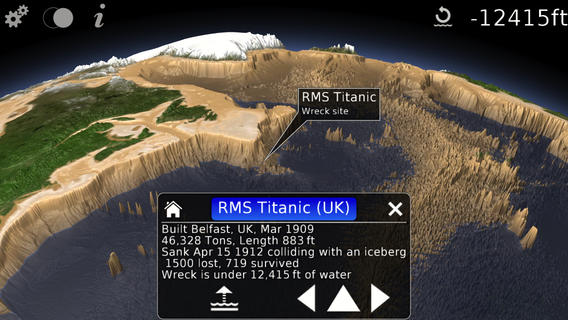
This is a 3D exaggerated virtual Earth that lets you explore the deepest oceans and the highest mountains. You can tour over 300 different "elevation relevant" locations, such as islands, cities and shipwrecks, and increase the low and high points on earth using the exaggeration option.
You can create high resolution imagery and share it with friends and visit (or create) a number of different global warming scenarios covering the past, present or future.
Offers in-app purchases.
This app aims to bring over 80 objects from London’s Science Museum to life. You can study, rotate and operate some of the world's most amazing scientific inventions, including the Apollo 10 Command Module, the World War II Enigma Machine, and a Magic Lantern.
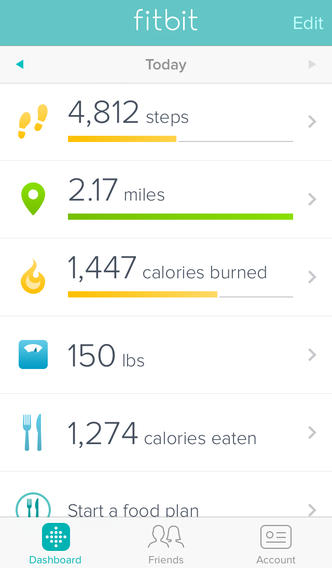 Updated in time for the New Year when people traditionally try to get into better shape, the Fitbit app now makes use of the iPhone 5s’ M7 motion coprocessor to transform Apple’s new phone into a basic Fitbit activity tracker.
Updated in time for the New Year when people traditionally try to get into better shape, the Fitbit app now makes use of the iPhone 5s’ M7 motion coprocessor to transform Apple’s new phone into a basic Fitbit activity tracker.It records the steps you take, distance traveled, calories burned, active minutes and more.
Although it isn’t a total replacement for dedicated Fitbit hardware like the Flex, Zip, or One, it is pretty decent, and free.
Apple’s App of the Week
Offers in-app purchases.
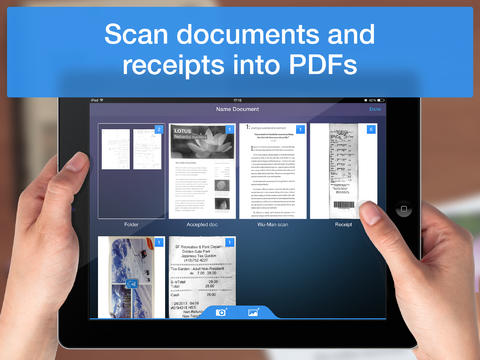
Readdle’s Scanner Pro usually sells for $7, but as Apple has made it app of the week it’s currently available for free. It turns your iPhone or iPad into a portable scanner and can scan documents, notes, receipts, photos, and so on, and upload them to services like Dropbox, Evernote, and Google Drive. You can also email or print scans.
In-app purchases are available in the form of Fax units.
-

Best iOS apps this week
Publié: janvier 3, 2014, 7:50pm CET par Wayne Williams
 First in a series. Every week thousands of great new iOS apps arrive in the App Store. These range from big name games to tiny gems hoping to build up a following by word of mouth. A trip into the app store can be a world of discovery, but it’s an area we’ve somewhat neglected in the past here at BetaNews.
First in a series. Every week thousands of great new iOS apps arrive in the App Store. These range from big name games to tiny gems hoping to build up a following by word of mouth. A trip into the app store can be a world of discovery, but it’s an area we’ve somewhat neglected in the past here at BetaNews.Well that’s set to change. Every Friday I’ll highlight the best new apps of the week -- both free and paid -- for iPhone and iPad. I’ll cover the biggest releases, naturally, but also endeavor to pull out some new or recently updated apps that you likely won’t be aware of.
I’ll also occasionally mention any price drops of note (including Apple's App of the Week picks), because who doesn’t love a sale or a bargain?
Naturally, I won’t be able to cover every app that gets released or updated so some great choices are bound to get missed, which is where (hopefully) you come in.
If you spot a great new app that I’ve failed to include please mention it in the comments below.
Finally, if you download and try any of the new apps I cover here, do let us know what you think of them.
Paid App of the Week
Sonic & All-Stars Racing Transformed ($4.99)
Offers in-app purchases.
Arriving in the App Store with little fanfare, this game is the official slimmed down iOS version of Sega’s console racer.
It’s a Mario Kart-style game in which you play as one of ten legendary characters including Sonic The Hedgehog, Tails, AiAi, and Shenmue’s Ryo Hazuki. Sega intends to add extra characters soon -- the console version has over 20 to choose from.
You can race on land, sea and in the air, and on dynamically changing courses. There’s a new World Tour mode designed for mobile, and you can race against friends both online and locally.
Free App of the Week
Offers in-app purchases.
A sequel to (can you guess?) True Axis' Jet Car Stunts, this game gives you the chance to indulge in some crazy stunt driving at high speeds, with mad jumps and jet physics.
It offers 120 levels and three difficulty settings, seven cars (with different handling) and four game modes. You can even create and share your own levels.
The game also supports physical iOS 7 controllers.
Other Apps
Feed Me Oil 2 ($2.99)
Offers in-app purchases.
Chillingo’s sequel to its popular liquid physics puzzler has a new look and lets you guide oil through the air, water and along ice.
There are four chapters to play through, and fun gadgets you can use to guide your oil, such as windmills and fans. Use as few tools as possible on a level to clear it with a three star rating.
LYNE ($2.99)
A minimalist puzzle game that, according to the developer, "will knot your brain as it calms your soul".
Essentially the aim is to connect shapes of the same type by drawing a line through them, and filling the board. There are hundreds of pre-built puzzles to play through, with procedurally-generated puzzles released daily.
Shoots & Leaves ($1.99)
There are lots of ways to share photos online including Facebook, Instagram, Twitter and Snapchat (well maybe not that last one at the moment). Shoots & Leaves is an alternative that lets you upload your photos to a hosting service (multiple choices are supported) and create a link that performs an action of your choosing. Actions include delivering a reminder, sending an SMS or an email, opening a link in Safari, sending it to another app (only Omnifocus and Drafts are supported at the moment) and so on.
Elevation Earth ($2.99)

This is a 3D exaggerated virtual Earth that lets you explore the deepest oceans and the highest mountains. You can tour over 300 different "elevation relevant" locations, such as islands, cities and shipwrecks, and increase the low and high points on earth using the exaggeration option.
You can create high resolution imagery and share it with friends and visit (or create) a number of different global warming scenarios covering the past, present or future.
Offers in-app purchases.
This app aims to bring over 80 objects from London’s Science Museum to life. You can study, rotate and operate some of the world's most amazing scientific inventions, including the Apollo 10 Command Module, the World War II Enigma Machine, and a Magic Lantern.
 Updated in time for the New Year when people traditionally try to get into better shape, the Fitbit app now makes use of the iPhone 5s’ M7 motion coprocessor to transform Apple’s new phone into a basic Fitbit activity tracker.
Updated in time for the New Year when people traditionally try to get into better shape, the Fitbit app now makes use of the iPhone 5s’ M7 motion coprocessor to transform Apple’s new phone into a basic Fitbit activity tracker.It records the steps you take, distance traveled, calories burned, active minutes and more.
Although it isn’t a total replacement for dedicated Fitbit hardware like the Flex, Zip, or One, it is pretty decent, and free.
Apple’s App of the Week
Offers in-app purchases.

Readdle’s Scanner Pro usually sells for $7, but as Apple has made it app of the week it’s currently available for free. It turns your iPhone or iPad into a portable scanner and can scan documents, notes, receipts, photos, and so on, and upload them to services like Dropbox, Evernote, and Google Drive. You can also email or print scans.
In-app purchases are available in the form of Fax units.
-

Surface had a good Christmas, appears to be selling well
Publié: janvier 2, 2014, 8:14pm CET par Wayne Williams
 Three days ago I wrote about Flurry’s findings regarding tablet activations on Christmas day. As was expected, Amazon enjoyed a massive 24x bump, and Apple and Samsung activations, while far less spectacular, both doubled. Flurry only covered those three firms and Acer, so there was no way of knowing how well other manufacturers had fared.
Three days ago I wrote about Flurry’s findings regarding tablet activations on Christmas day. As was expected, Amazon enjoyed a massive 24x bump, and Apple and Samsung activations, while far less spectacular, both doubled. Flurry only covered those three firms and Acer, so there was no way of knowing how well other manufacturers had fared.Today online advertising network Chitika releases its report, the result of examining post-Christmas changes in North American web traffic share, and this shows usage gains from Amazon, a minor drop from Apple, and -- perhaps most surprisingly -- strong gains for Microsoft’s Surface range.
The figures show that Surface tablets picked up an additional 0.5 percent usage share in the US and Canadian tablet markets during the post-Christmas period, for a total of 2.3 percent. That growth is just 0.1 percent behind Amazon which tops the table with a 0.6 percent usage growth.
Chitika doesn’t differentiate between the various models Microsoft offers (Surface, Surface 2, Surface Pro 2), but it’s not unreasonable to expect -- as we're talking Christmas -- a lot of that growth has come from the more affordable RT options.
According to Chitika, "Microsoft’s Surface lineup continued its impressive year end run. Surface users generated more tablet traffic than all Google Nexus tablet users following the holiday, making Microsoft the fourth-largest source of continental tablet Web traffic should it maintain the lion’s share of this latest share growth".
Despite dropping -1.3 percent, Apple still has 76.1 percent usage share, with Amazon on 9.4 percent, and Samsung on 5.9 percent, so Microsoft still has some way to go. However, its usage growth does now put it 0.3 percent above Google.
Of course tablet web traffic doesn’t directly translate into sales or market share, but it is an indication at least that Surface appears to be finally finding an audience.
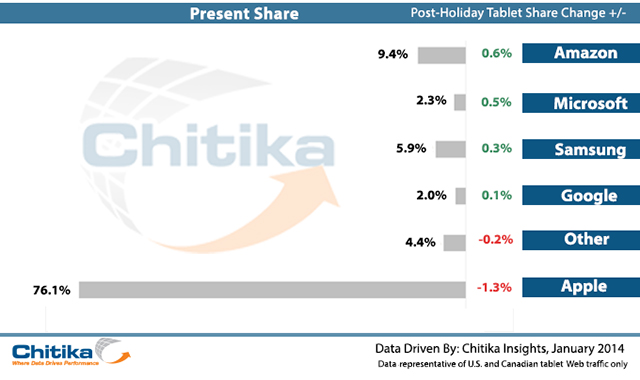
Photo Credit: ollyy/Shutterstock
-

Winamp finds a buyer -- and it’s not Microsoft
Publié: janvier 1, 2014, 3:22pm CET par Wayne Williams
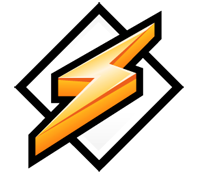 Winamp was a massively popular media player in the nineties, but it withered under AOL’s ownership, and failed to move with the times. Few people were surprised when a month ago AOL finally decided to cut its losses, announcing that, starting December 20 2013, the site and associated cloud services, including Shoutcast, would no longer be available to the public.
Winamp was a massively popular media player in the nineties, but it withered under AOL’s ownership, and failed to move with the times. Few people were surprised when a month ago AOL finally decided to cut its losses, announcing that, starting December 20 2013, the site and associated cloud services, including Shoutcast, would no longer be available to the public.A petition to save the media player garnered close to 50,000 signatures, and Spotify created a fun tribute called Spotiamp, but the writing looked to be firmly on the wall for Winamp, despite rumors that Microsoft was interested in saving the service. Today it appears that Winamp has indeed found a savior, but it’s not one that anyone was expecting.
Although there’s been no official announcement yet (hardly surprising given it’s New Year’s Day), a Whois request now shows Winamp’s name servers pointing to Radionomy, a service that lets you discover, listen to and create online radio stations.
If Radionomy is indeed the new owner it bodes well for Shoutcast’s survival, but what it will mean for the Winamp media player is less clear.
Hopefully we’ll have a better idea once an official announcement is made.
-

Windows 8.x claims 10% market share, but Windows 7’s massive gain is the real story
Publié: janvier 1, 2014, 1:41pm CET par Wayne Williams
 Great news for fans of Windows 8 and 8.1, Microsoft’s divisive operating system has finally claimed 10 percent of the desktop market. According to NetMarketShare, which monitors such things, in December Windows 8 lost 0.01 percent share, but Windows 8.1 grew by 0.86 percent. Windows 8 now has 6.65 percent of the market and Windows 8.1 is sitting on 3.5 percent, bringing the OS’s combined share to 10.15 percent. Great job Windows 8.x.
Great news for fans of Windows 8 and 8.1, Microsoft’s divisive operating system has finally claimed 10 percent of the desktop market. According to NetMarketShare, which monitors such things, in December Windows 8 lost 0.01 percent share, but Windows 8.1 grew by 0.86 percent. Windows 8 now has 6.65 percent of the market and Windows 8.1 is sitting on 3.5 percent, bringing the OS’s combined share to 10.15 percent. Great job Windows 8.x.However, as seems to regularly be the case, the new operating system’s gain was dwarfed by that of its elder sibling. Windows 7 put on a growth spurt that’s nothing short of stunning.
In November, Windows 7’s market share grew by 0.22 percent. Or, to put it another way, gained four times as much market share as Windows 8 and 8.1 combined, which seemed impressive at the time. However, in December, the older OS grew by a staggering 2.62 percent to give it 49.26 percent of the desktop market.
Let me spell it out for you. The heavily promoted Windows 8.x -- two new operating systems combined -- grew by 0.86 percent. Windows 7, the much older non-promoted OS, leapt by 2.62 percent in the run up to -- and including -- Christmas. In other words, in a single month Windows 7 grew by a quarter of Windows 8.x’s total share.
All of this growth has to come from somewhere of course, and it comes at the expense of Windows XP which dropped from 31.22 percent to 27.84 percent, a fall of 3.38 percent. Windows Vista also contributed, losing a modest 0.11 percent share.
Mac OS X 10.9 (Mavericks) grew from 2.42 percent to 2.86 percent in December, for a moderate 0.44 percent gain.

Next month’s market share figures will be interesting, as they’ll show us just what sort of Christmas Windows 8.x had. Can Windows 7 continue to pack on market share, or was December’s surge a statistical anomaly? That certainly seems likely, although you never can tell with Windows 7 which has beaten Windows 8.x's gains in three straight months now.
Photo Credit: Rappholdt/Shutterstock
-

My (achievable) tech resolutions for 2014 [Wayne]
Publié: décembre 31, 2013, 12:08pm CET par Wayne Williams

As you’ll have noticed by now, the BetaNews writers have been making tech-based resolutions for the New Year. This is something I did last year, and revisiting my post for the first time since I originally wrote it, I discovered what I suspected would be the case -- I failed miserably across the board.
I said I would embrace Google+, but I haven’t. I’ve followed some people, and used Google’s social network slightly more, but embraced it? Nope. I said I’d change my passwords. I changed maybe two. I claimed I’d sort out my inbox. It was 79 percent full (8GB) then. It’s 74 percent full (11.19GB) now, so that’s a big fat fail. I said I’d learn to love Windows 8. I never did. I do really like Windows 8.1 though, so I'll claim that as a win. I stated I’d move my data to the cloud, and learn to program. I think you can guess how well those panned out. While a lot of my files are stored in the cloud, I still have multiple local copies of everything, and I haven’t programmed so much as a single line of code. So for this year’s list, I’m going to choose resolutions I believe I can actually achieve.
Download More Apps
I download crazy amounts of apps for iOS and my original idea was to resolve to only download apps I know I’ll use, rather than everything that catches my eye, but that will never happen. So instead I’m going to pledge to keep downloading apps. And in fact I’m going to download even more iOS apps, and write a weekly column celebrating the best new releases every week. Watch out for the first one soon.
I’ll download more Windows 8.x apps in 2014 too. But seeing as I probably only have five apps on my Win 8.1 computer that won’t be a major stretch.
Consolidate All My Storage
I bought a new NAS drive recently, and although I’ve set it up there’s still some way to go until all my tech (such as my Wi-Fi enabled video camera) makes proper use of it. I also use numerous cloud storage services (iCloud, SkyDrive, Google Drive and Amazon Cloud Drive to name the four main ones) and want to limit duplication where possible. I’m halfway through the process of sorting everything, so I’d like to think I can manage this one.
Upload ALL My Photos to Flickr
Flickr gives users 1TB of space for free, and although I use some of my quota, I could easily just upload all of my old photos to the site and forget about them until needed. I know that slightly contradicts my previous resolution, but I view it as a bonus backup, rather than yet another storage service. I should achieve this one as the first batch is already uploading as I write.
Digitize All My Old Media
I bought a new scanner in 2012 with the aim being to digitize all my old photographs, and although I did get through a batch of them I’ve still got hundreds, or maybe thousands more to scan. Similarly I added a couple of terabytes of storage to my PC to hold all the video I was going to digitize (all those home movies etc.) but it seems to be full of music files, new photos, and book drafts at the moment. I can’t guarantee I’ll manage to complete this resolution, but I will give it a try at least.
Other Resolutions
It’s unlikely I’ll use Google+ any more than I already am, but I will try to get back to using Twitter more. I stopped using it fully some years ago when I found it consuming too much of my life, but I will try to spend more time on there. I will also try to change more passwords than last time (I’m aiming for four or five), and thin out my inbox -- deleting just those emails with the largest, least important attachments should help me regain a fair amount of free space for the minimum of effort.
What about you? Do you have any achievable tech resolutions?
Photo Credit: bahri altay/Shutterstock
-

Tablet activations surge over Christmas, but it's not all good news
Publié: décembre 30, 2013, 12:28pm CET par Wayne Williams
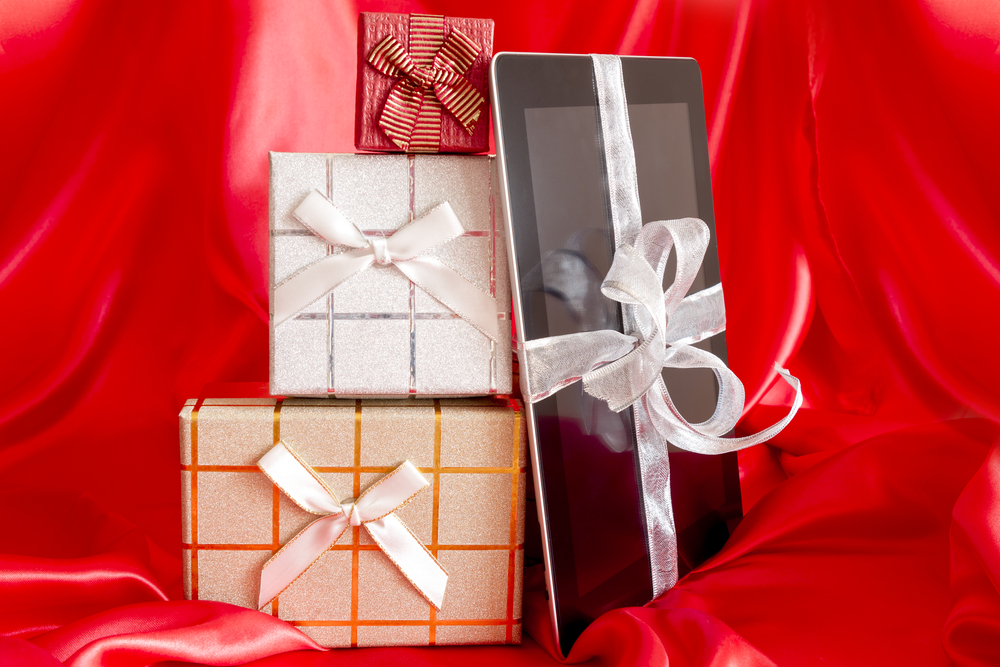 Unsurprisingly tablets proved to be a very popular gift this Christmas. According to mobile measurement firm Flurry, device activations were up by 63 percent on Christmas day, compared to any other average day in December.
Unsurprisingly tablets proved to be a very popular gift this Christmas. According to mobile measurement firm Flurry, device activations were up by 63 percent on Christmas day, compared to any other average day in December.Flurry’s activation figures cover Amazon, Apple, Acer, and Samsung and reveal an interesting trend. While all four tech firms enjoyed a major bump on the day, activations were much lower this year than in the previous two years.
Amazon once again had by far the most popular tablet range this Christmas, something Flurry believes is down to "price, business model, target market, and form factor". Kindle Fire activations jumped by 24x on the day.
Apple usually experiences a larger Christmas lift than arch rival Samsung, and this year was no different, although the gap between the two manufacturers has narrowed significantly. Apple saw a 2.3x increase, while Samsung’s bump was 1.9x.
Acer enjoyed a 5x jump in activations, due, Flurry believes, to "form factor and relatively low price".
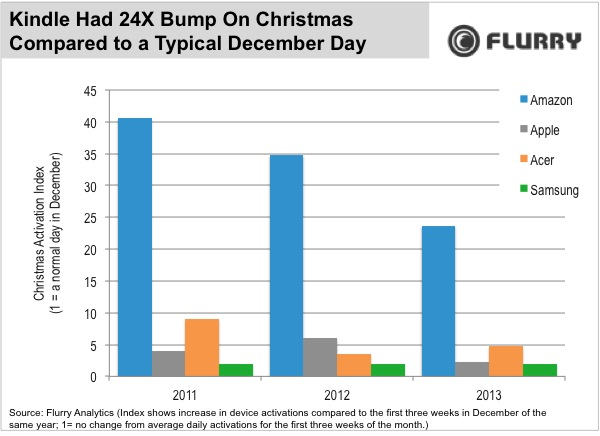
That year on year drop is interesting though and Flurry says: "Overall, while still significant, we can see that the size of the Christmas activation bump has declined over time for most manufacturers who ever had one. Even Amazon has dropped from forty-one times its baseline activations on Christmas 2011 to twenty-four on Christmas 2013. This is likely to be due to the increased overall penetration of smartphones and tablets, and is expected in a maturing industry. With more people having smartphones and tablets there are fewer new users to give them to, and giving to existing users is more challenging since existing users are already tied into carrier contract renewal cycles, app ecosystems, etc.”
Flurry also found that Wi-Fi-only devices were easily the most popular type of tablet. That's to be expected considering they are cheaper and therefore better suited as gifts than ones additionally offering a cellular connection.
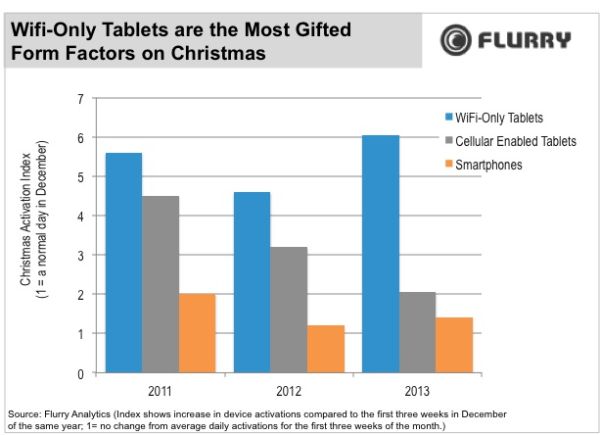
Did you receive a new tablet for Christmas this year? If so, which make and model?
Photo Credit: manaemedia/Shutterstock
-

Play vintage console games in your browser courtesy of the Internet Archive
Publié: décembre 27, 2013, 2:43pm CET par Wayne Williams

The Internet Archive has launched a new section on its website dedicated to the games consoles of the late 1970s and early 1980s. Called The Console Living Room, it provides information on all of the systems you might have owned in the past including the Atari 2600, Atari 7800, ColecoVision, Magnavox Odyssey (or Philips Videopac G700, if you live in Europe) and the Astrocade.
It’s a fascinating trip down memory lane, but that’s not the best part. You can also play the majority of the big games from those consoles in your browser -- for free!
Just pick a console and browse the list of available games. The JSMESS (JavaScript MESS) player should run in most modern browsers, although Atari 2600 titles run best in Firefox, apparently.
There’s no sound on offer yet, but that is something the Internet Archive hopes to implement in the future. As Jason Scott explains in an Internet Archive blog post: "Like the Historical Software collection, the Console Living Room is in beta -- the ability to interact with software in near-instantaneous real-time comes with the occasional bumps and bruises. An army of volunteer elves are updating information about each of the hundreds of game cartridges now available, and will be improving them across the next few days".
You will need to access the site on a PC or Mac, as the emulator doesn’t work on a tablet or mobile.
A Dark Background button will let you dim the page, to make it easier to concentrate on the gaming action.
You can explore the full list of games at The Console Living Room now.
What was your first games console, and which games did you enjoy playing the most on it?
Photo Credit: The Internet Archive
-

Santa brought you Windows 8.1? Here's what to do first
Publié: décembre 26, 2013, 4:42pm CET par Wayne Williams
 Windows 8.1 is a great operating system. So if you received it for Christmas, either as a boxed copy, or installed on a new PC or tablet, the first thing to do is not -- as some people will say -- swap it for Windows 7.
Windows 8.1 is a great operating system. So if you received it for Christmas, either as a boxed copy, or installed on a new PC or tablet, the first thing to do is not -- as some people will say -- swap it for Windows 7.If you are going to be running the new OS on a tablet, or on a system with a touch screen, then it’s fine to use pretty much as is. If you’re using it on a desktop, or non-touch laptop however, there are some customizations worth performing to make it more suited to your needs.
Boot to desktop and get the Apps view
From the desktop, right-click the taskbar and select Properties. Click the Navigation tab. To bypass the Modern UI tick "When I sign in or close all applications on a screen, go to the desktop instead of Start".
To use the Apps view (which is like a giant Start menu) instead of the tiled Modern UI, tick "Show the Apps view automatically when I go to Start". If you mostly only use desktop programs, tick "List desktop apps first in the Apps view when it’s sorted by category".
To have your Windows wallpaper appear on the Start (or Apps screen), which makes switching between the two much less jarring, tick "Show my desktop background on Start".
Hit Apply and OK.
Automate login and bypass the lock screens
If you want to boot into Windows 8.1 as quickly as possible, and security isn’t a major worry for you, you can customize the OS so you don’t have to go through the lock screen or log in every time.
From the Start screen type "run". Click on Run and type "netplwiz". OK that and highlight your account. Uncheck "Users must enter a username and password to use this computer". Click Apply. Then enter your password twice. Click OK.
Restore Libraries
One of the main save options, Libraries, has been removed from File Explorer’s sidebar in Windows 8.1. Fortunately, it’s very easy to restore this location to its rightful position.
In File Explorer click the View tab. Click the Navigation button, select Show Libraries and click OK. Once restored you can click and drag Libraries anywhere you like in the sidebar, right-click to pin them to the Start screen, and so on.
Add a Start menu
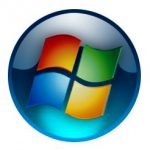 There are plenty of free third-party Start menus available which replace the Modern UI and make Windows 8.1 behave more like Windows 7.
There are plenty of free third-party Start menus available which replace the Modern UI and make Windows 8.1 behave more like Windows 7.The best of these programs is Classic Shell, although you might also want to check out StartW8 and IObit StartMenu8.
For more Start button/menu suggestions view two of my previous articles on the subject:
Don’t wait for Windows 'Threshold', get a Start button and menu in Windows 8.1 NOW
Get a REAL Start button and menu in Windows 8.1
If you have just got Windows 8.1, what do you make of new OS?
-

My favorite tech products of 2013 [Wayne]
Publié: décembre 24, 2013, 12:34pm CET par Wayne Williams

Yesterday my colleague Mihaita Bamburic presented his list of the year’s top tech products, which included some obvious big choices, most notably Windows 8.1, iPad Air, Surface 2 and the Xbox One.
My list could easily be a carbon copy of his, after all the biggest tech products are hits for a reason, and despite not being a fan of Windows 8, I really like its successor, and would happily own both the iPad Air and Surface 2 if funds allowed. But I wanted to approach my selection slightly differently by avoiding products which featured on Mihaita’s list, and focusing on items I’ve bought (or been sent) and have used extensively. These are the tech products I’ve really appreciated the most this year.
My custom built PC
I hate slow technology. I work at a fast pace and I expect the tools I’m using -- be it a PC, a tablet or a mobile -- to at least keep up with me.
My old PC, which was no slouch, kept me waiting far too many times in the first half of 2013, so I upgraded it. The new specs are:
- Intel Core i7 4770K CPU
- GigaByte Z87-HD3 mainboard
- GeForce GTX TITAN GPU
- 32GB DDR3 RAM (I doubled it last week)
- 240GB Kingston V300 SSD
- 10TB of storage
- 2x 24 inch LG screens (without touch)
- Windows 8.1
It’s still not quite quick enough at times, but overall it’s pretty damn fast, and will do me for now…
iPhone 5s
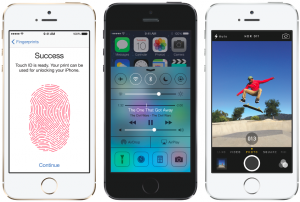 After a few years of using Samsung Android smartphones, I made the decision to return to Apple and haven’t regretted it for a minute. I love everything about the new device. The one thing I miss about my Galaxy S III is Signal Boost, which strengths the cellular signal using Wi-Fi -- something I used all the time. That’s a feature I’d love Apple to implement in the future. I really like being able to log in with my thumb and the Touch ID sensor integrated into the home button identifies me all of the time, in just a second or so.
After a few years of using Samsung Android smartphones, I made the decision to return to Apple and haven’t regretted it for a minute. I love everything about the new device. The one thing I miss about my Galaxy S III is Signal Boost, which strengths the cellular signal using Wi-Fi -- something I used all the time. That’s a feature I’d love Apple to implement in the future. I really like being able to log in with my thumb and the Touch ID sensor integrated into the home button identifies me all of the time, in just a second or so.iOS 7
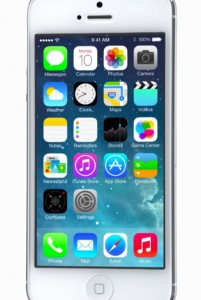 A lot of people weren’t keen on Jony Ive’s redesign of iOS, but I really like it. The look is modern, and I for one am glad to see the back of skeuomorphism. I’m used to, and appreciate the new app switcher, and make great use of the new notifications screen and control center.
A lot of people weren’t keen on Jony Ive’s redesign of iOS, but I really like it. The look is modern, and I for one am glad to see the back of skeuomorphism. I’m used to, and appreciate the new app switcher, and make great use of the new notifications screen and control center.As I own an iPad and an iPhone, the new AirDrop function provides a simple way of sharing items between the two devices.
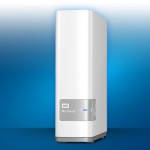 I take a lot of digital photos (on my Canon DLSR, smartphone and occasionally on my iPad) and have been storing them on an external drive, and in the cloud. This year I decided to add a NAS drive so I could add and view images from anywhere, and I chose WD My Cloud. I can now view my photos and videos from everywhere -- including on my tablet, or TV -- as soon as they are taken, which is great. There are apps so I can upload, access and share from anywhere using a tablet or phone.
I take a lot of digital photos (on my Canon DLSR, smartphone and occasionally on my iPad) and have been storing them on an external drive, and in the cloud. This year I decided to add a NAS drive so I could add and view images from anywhere, and I chose WD My Cloud. I can now view my photos and videos from everywhere -- including on my tablet, or TV -- as soon as they are taken, which is great. There are apps so I can upload, access and share from anywhere using a tablet or phone.Flickr
I used Flickr years ago, but then lost interest in it at about the same time Yahoo also lost interest in its product. But earlier this year Yahoo upped the amount of free storage to 1TB for everyone, and I’m using it again. The service could do with a bit of a polish (which is true of everything Yahoo does), but being able to dump as many photos as I like up there, and share them however I want is fantastic. It's also great to be able to download photos from anywhere and at whatever size I need them.
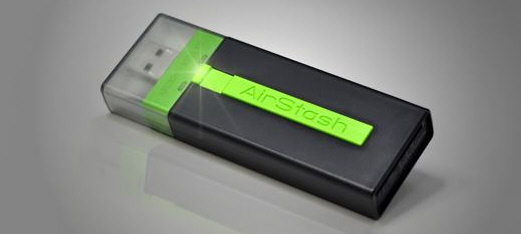 My iPad 4 is so full of apps there’s not much space on there for photos, videos or music. Luckily I’ve expanded the available storage using AirStash. This is a USB pen drive with built in Wi-Fi that you can connect to and stream or copy content from. Storage comes in the form of SD cards, so it’s infinitely expandable. I’ve taken lots of films and TV series on the road with me when traveling, and used it to review photos from my camera. A great little device.
My iPad 4 is so full of apps there’s not much space on there for photos, videos or music. Luckily I’ve expanded the available storage using AirStash. This is a USB pen drive with built in Wi-Fi that you can connect to and stream or copy content from. Storage comes in the form of SD cards, so it’s infinitely expandable. I’ve taken lots of films and TV series on the road with me when traveling, and used it to review photos from my camera. A great little device.Nexus 7
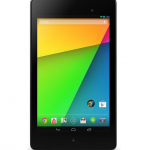 I love my iPad and take it pretty much everywhere, but occasionally it’s good to have a smaller tablet to hand, and the new Nexus 7 is superb (I could have bought an iPad mini, but it’s expensive for what really will only ever be a second tablet). Android 4.4 KitKat is a marked improvement, the device itself is speedy, and I find myself actually using it more than I expected to. It's also great because I now have a home for all of the apps I used to use on my Samsung Galaxy S III.
I love my iPad and take it pretty much everywhere, but occasionally it’s good to have a smaller tablet to hand, and the new Nexus 7 is superb (I could have bought an iPad mini, but it’s expensive for what really will only ever be a second tablet). Android 4.4 KitKat is a marked improvement, the device itself is speedy, and I find myself actually using it more than I expected to. It's also great because I now have a home for all of the apps I used to use on my Samsung Galaxy S III.TP-Link 300Mbps Universal WiFi Range Extender
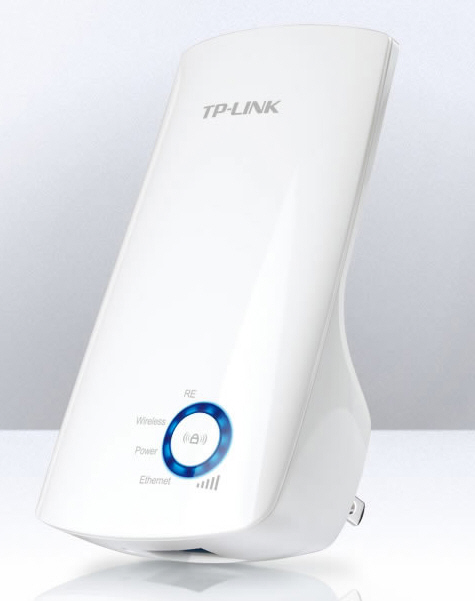 I have a 100Mbps internet connection at home (because, as I said I don’t like waiting), but my house has had several extensions added to it over the years -- from before I moved in, I hasten to add -- and so is an odd shape, long and tall, with thick walls. As a result my Wi-Fi doesn’t quite reach to some of the rooms, and there’s no signal at all in the garden, so no browsing the web outside in the summer months. The TP Link device (TL-WA850RE) is a very affordable, very easy to use range extender that you plug into any spare electrical socket. I picked up a couple of these for a song via Groupon and now my Wi-Fi reaches everywhere, which is fantastic. The product also includes an Ethernet port so you can turn wired devices into wireless ones.
I have a 100Mbps internet connection at home (because, as I said I don’t like waiting), but my house has had several extensions added to it over the years -- from before I moved in, I hasten to add -- and so is an odd shape, long and tall, with thick walls. As a result my Wi-Fi doesn’t quite reach to some of the rooms, and there’s no signal at all in the garden, so no browsing the web outside in the summer months. The TP Link device (TL-WA850RE) is a very affordable, very easy to use range extender that you plug into any spare electrical socket. I picked up a couple of these for a song via Groupon and now my Wi-Fi reaches everywhere, which is fantastic. The product also includes an Ethernet port so you can turn wired devices into wireless ones.What new tech have you acquired that you love this year?
Photo Credit: Gonzalo Aragon/Shutterstock
-

Surprise! The global PC monitor market sees positive growth for a change
Publié: décembre 24, 2013, 9:54am CET par Wayne Williams
 The PC market might still be in the doldrums, but there’s good news in the screen department at least. After three quarters of solid decline, the International Data Corporation (IDC) Worldwide Quarterly PC Monitor Tracker finally reports some growth.
The PC market might still be in the doldrums, but there’s good news in the screen department at least. After three quarters of solid decline, the International Data Corporation (IDC) Worldwide Quarterly PC Monitor Tracker finally reports some growth.Although year-over-year growth was down -8.6 percent in 3Q13, due to the ongoing decline in PC sales, monitor shipments topped more than 35 million units, 1.2 million over the forecast, and showed an increase of 4.5 percent compared to the previous quarter.
"Asia/Pacific (excluding Japan)(APeJ), Western Europe, and Central and Eastern Europe (CEE) outperformed the overall market in the third quarter and increased their regional market shares," says Jennifer Song, Research Analyst, Worldwide Trackers at IDC. "China and India were the top growth drivers within APeJ, while Germany and Russia were the leading country markets in Europe".
As to quarter four? Well IDC is forecasting a return to bad news with a quarter-over-quarter decline of -3.2 percent in worldwide shipments to 33.9 million units, and a year-over-year decline of -8.5 percent, although that’s an improvement on previous forecasts.
Highlights from the report include:
- LED backlight technology adoption continues to increase with 84.9 percent market share in 3Q13. This represents a year-over-year increase of 14.4 percentage points.
- Screen size of 21.x-inches wide has held the largest worldwide share for the last four quarters, with 21.4 percent share in 3Q13.
- Aspect ratio of 16:9 continues to dominate with 77.5 percent market share, which is more than four times the second most widely used aspect ratio of 16:10.
- Monitors with TV tuners are expected to grow to 7.7 percent market share by 2017, up from 5.7 percent share in 2013, led by LG and Samsung with a combined market share of 95 percent in this category.
- While touchscreen monitors are still a small segment of the total PC monitor market at 0.3 percent share, it is mostly in the US at 48.6 percent share with Dell holding a 28.6 percent portion of the US market.
Worldwide PC Monitor Unit Shipments, Market Share, and Year-over-Year Growth, Third Quarter 2013
Vendors 3Q13 Unit Shipments
3Q13 Market Share
3Q12 Unit Shipments
3Q12 Market Share
3Q13/3Q12 Growth
1. Dell 4,852,437
13.9%
4,816,777
12.6%
0.7%
2. Samsung 4,250,894
12.1%
5,962,887
15.6%
-28.7%
3. HP 3,798,672
10.8%
4,159,171
10.9%
-8.7%
4. LG 3,469,994
9.9%
3,507,322
9.2%
-1.1%
5. AOC 3,199,166
9.1%
3,142,615
8.2%
1.8%
All Vendors 35,035,610
100%
38,311,764
100%
-8.6%
Source: IDC Worldwide Quarterly PC Monitor Tracker, December 2013.
Photo Credit: maminez/Shutterstock
-

Galaxy Gear -- the tech creepy weirdos use to stalk women, apparently
Publié: décembre 23, 2013, 7:00pm CET par Wayne Williams
Good commercials can do several things. They can entertain you, endear you to the brand, and make you covet the product they are trying to sell. The new Samsung Galaxy Gear video does none of those things.
My colleague Alan Buckingham watched the video and declared Samsung Galaxy Gear wants to improve your social life. My impression is slightly different. The guy wearing the watch is a major creep with stalker tendencies. He gets the girl at the end of the video, sure, but to be honest, I fear for her safety. Here’s how the sinister events unfold.
The commercial starts with three people on a ski lift. It soon transpires they don’t know each other.
Aimee is pretty, blonde, and obviously concerned about being on a lift sandwiched between two guys, one of whom is wearing a watch he talks to. "Want to see something cool?" the watch wearer asks.
Aimee clearly doesn’t, but answers "sure". She’s trapped on a ski lift -- there’s nowhere for her to go.
"Give me your number" the guy demands. The way he looks at her makes it clear this guy is grade A psychopath. Nothing good can come from this.

Aimee, fearing for her life, gives him her number. Her real number.
He calls her. She answers. They are sitting a few inches apart.
"Hey pre-de ladee" he says, in a voice which should set off all sort of alarm bells, and tells her his name is Jack. She introduces herself. The ski lift stops and they get off. The other guy, who likes Aimee and is clearly a much safer choice of suitor (despite nearly killing someone below by accidentally dropping his skis on their head), looks sad.
Aimee then snowboards off, obviously pleased to be free of the creep. But no, he follows and takes 64 photos and videos of her -- 64 photos and videos of a stranger he’s just met -- before arriving to confront her. "Oh hi Jack", Aimee says, pretending not to have seen her newly acquired stalker despite the fact he was clearly close enough to touch her the whole time she was snowboarding, because if he hadn’t been all of his photos of her would have been tiny dots (the Gear doesn’t have the massive zoom required to capture such clear shots) and at one point early on she must have been pretty much staring straight into his wrist.
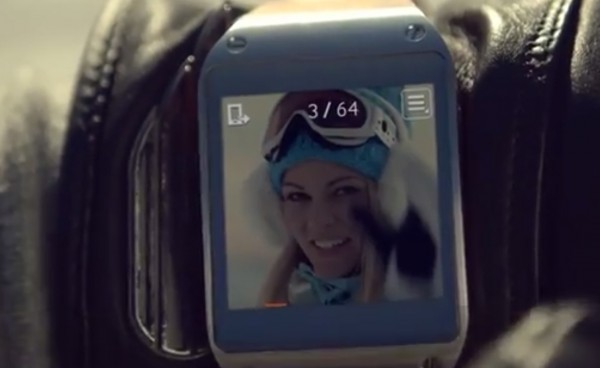
"We can do more" Jack says, disturbingly. And they snowboard off. Possibly together, or maybe he’s just following her. Again. "See you soon Jack," Aimee eventually says before finally making good her escape.
Cut to a busy bar that evening. Aimee and Jack -- who is watching one of his videos of Aimee on the Galaxy Gear-- bump into each other and Jack drops his phone on the floor. Aimee pretends to be pleased to see him, he pretends to be surprised to see her. The other guy from the ski lift looks concerned to see them together. I get the impression he’s worried for Aimee’s safety.
Aimee goes to pick up Jack’s phone. "Don’t worry, I’ve got it", Jack says and activates the Gear’s phone finder. His phone rings, and despite being in a noisy bar, he locates the dropped device by sound. "Let me get us some drinks" Jack says, not taking no for an answer. He then takes a photo of a bottle of wine with his Gear for no reason. While at the bar he gets a call from Aimee who walked off seconds ago and must still be visible in the room. Presumably she’s calling to make her excuses and wants to do so from a distance.
The other guy, who is standing around with two glasses of wine also gets a call. In fishing out his phone, he drops a glass. We don’t know who is calling him, but clearly it’s not Aimee since she’s phoning Jack. Hopefully it’s the police responding to his emergency call. Don’t worry Aimee, help is on the way!
"I’ll be right there" Jack says chillingly to Aimee on his wrist. She’s not getting away that easily.
They meet up outside and Jack hands her a glass of wine and using the Gear he starts some music playing. Aimee wants to know where the tinny tune is coming from and Jack mumbles about it coming from his phone which, inexplicably he has left lying some distance away from them. Aimee snuggles up to him, presumably feeling woozy from the Rohypnol he slipped into her wine, and Jack stares ahead and does this…

Where are the police? Hang on Aimee! Hopefully our hero, who downed his one remaining glass of wine for Dutch courage, is coming to the rescue…
As disturbing as the video is, you can add a whole new layer of weirdness to the proceedings by watching it with the YouTube captions turned on, something I’d definitely recommend doing.
-

Brighten up your PC with the best Bing homepages of 2013
Publié: décembre 23, 2013, 12:07pm CET par Wayne Williams
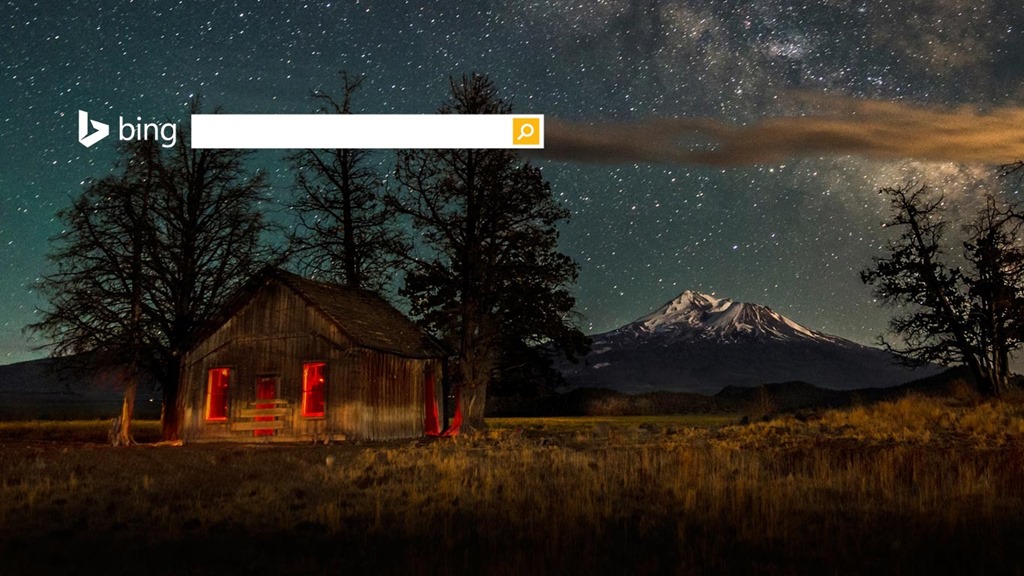
Bing is a decent search engine, and the daily images that adorn its homepage are always worth a look. Late last week the Bing team announced the ten most popular homepage images for 2013, which includes an aerial view of Gardens by the Bay and the Super Trees in Singapore City, a night shot of Mount Shasta in California, a mangrove seen from underwater in the Seychelles, and Lulworth Cove along the Jurassic Coast, in England. As well as showing off the pictures, the Bing team provides a link so you can download them for use as desktop wallpaper.
If you’d prefer to have the images cycling in a screensaver, the Bing team has now made that possible too, in the form of a new 13MB "Wallpaper & Screensaver" Pack.
"At Bing, we are obsessed with great imagery. Our team pores over thousands of photos to deliver you that one special homepage image that showcases the world from a new perspective. From underwater mangroves to Himalayan mountain ranges, you were able to traverse the planet on the homepage in 2013. With that in mind, we thought it would be interesting to end the year highlighting the top ten most popular homepages based on your interaction", says the description accompanying the download.
It’s a great pack of images, and if you’re looking for something to enliven your PC definitely worth a download.
-

Apple announces long-awaited deal to bring iPhones to China Mobile
Publié: décembre 23, 2013, 10:21am CET par Wayne Williams
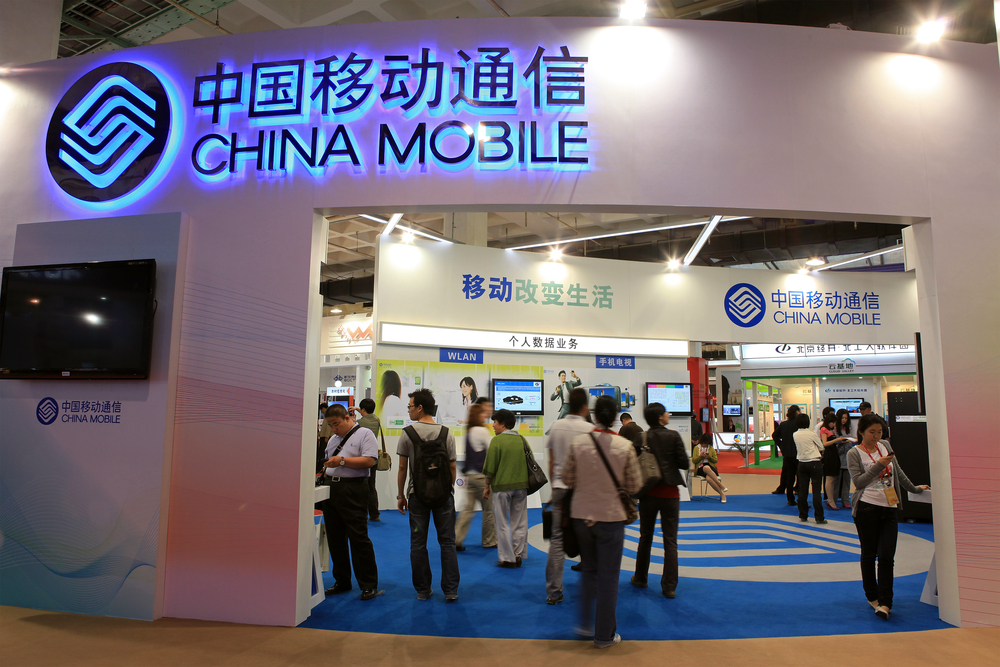
It’s been a long time coming, but finally Apple announces it has entered into a multi-year agreement to bring the iPhone to China Mobile, the world's largest mobile network.
As part of the agreement, the iPhone 5s and iPhone 5c will be available from China Mobile's extensive network of retail stores, as well as Apple’s own retail locations across mainland China, beginning on Friday, January 17, 2014. Pre-registration to get a handset will begin 25 December.
"Apple has enormous respect for China Mobile and we are excited to begin working together. China is an extremely important market for Apple and our partnership with China Mobile presents us the opportunity to bring iPhone to the customers of the world's largest network," Tim Cook, Apple CEO says. "iPhone customers in China are an enthusiastic and rapidly growing group, and we can’t think of a better way to welcome in the Chinese New Year than getting an iPhone into the hands of every China Mobile customer who wants one".
The agreement is massive for Apple -- China Mobile has over 760 million customers, dwarfing AT&T's 109 million.
"Apple’s iPhone is very much loved by millions of customers around the world. We know there are many China Mobile customers and potential new customers who are anxiously awaiting the incredible combination of iPhone on China Mobile’s leading network. We are delighted that iPhone on China Mobile will support our 4G/TD-LTE and 3G/TD-SCDMA networks, providing customers with high-speed mobile service," says Xi Guohua, China Mobile Chairman.
Details regarding pricing will be given at a later date.
Photo Credit: testing/Shutterstock
-

10 cutting-edge technologies Santa can use to deliver Christmas gifts this year
Publié: décembre 20, 2013, 8:57pm CET par Wayne Williams
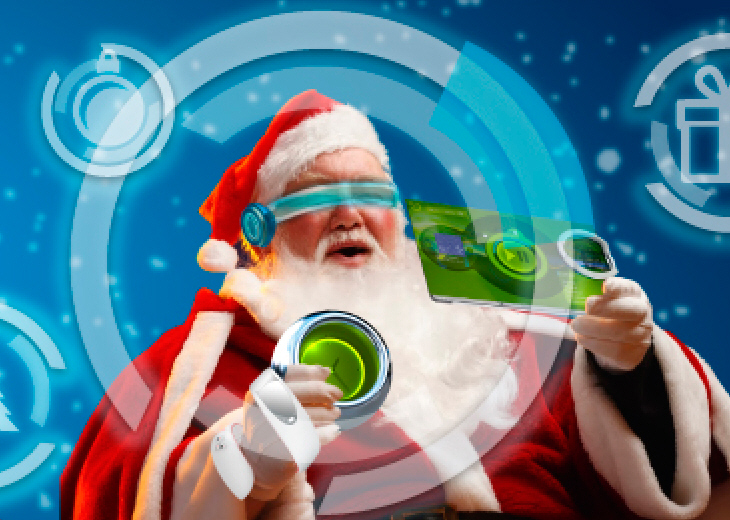
Christmas is nearly here, and Santa is getting ready for his yearly round of toy deliveries. Of course the days of making wooden soldiers and spinning tops are long gone -- kids today want more hi-tech gear, and Saint Nicholas has had to move with the times.
He no longer has to rely entirely on hand delivering everything in a reindeer powered sleigh either, thanks to advances in parcel delivery like the Hyperloop inspired YuleTube or the Amazon Drone-style Gift-o-Copters, and optical camouflage technology ensures Santa will remain virtually invisible while making deliveries (and enjoying furtive kisses with mommy underneath the mistletoe).
FinancesOnline.com has put together a great infographic covering all aspects of Santa’s operations, from kid surveillance to Christmas Eve logistics. Take a browse through it and you’ll discover that:
- Santa’s complex system can cost as much as $227-Billion in devices and programs.
- A Chinese Supercomputer will enable Santa to read billions of gift requests from kids around the world in an instant.
- Santa’s Elves can go high-tech with Exoskeletons that will boost their productivity to the max!
- And you don’t need to worry about bad weather stopping Santa getting out of his polar hub, thanks to the introduction of self-heating streets.
It’s all good fun, and a festive treat to get you in the mood ready for the big day. Ho Ho Ho!

-

Take control of your privacy in Windows 8.1
Publié: décembre 20, 2013, 2:02pm CET par Wayne Williams

Privacy has been a hot topic throughout 2013 and it’s always worth taking a little time to make sure you’re not accidentally sharing more information with the world than you might want to. Microsoft’s tiled operating system comes with some handy privacy controls baked in that you should definitely take a look at if you haven’t already.
This feature won’t stop the NSA spying on you, but it can prevent apps from accessing personal details like your name, photo, location and account info, and prevent them from using your PC or tablet's camera and microphone without your knowledge.
To get to the Privacy settings, summon the Charms and open Settings. Select "Change PC Settings" and the select Privacy on the left.
From here you can prevent applications from accessing personal data (this should be off by default), stop apps from using your advertising ID, and block websites from providing locally relevant content by using your language list.
The Location section lets you choose which apps (if any) can use your location, and you can control webcam and microphone access in the same way under Webcam and Microphone, respectively.
-

Xbox One is so desperate to hear your voice, it’s charging you a fortune just for listening
Publié: décembre 19, 2013, 3:04pm CET par Wayne Williams
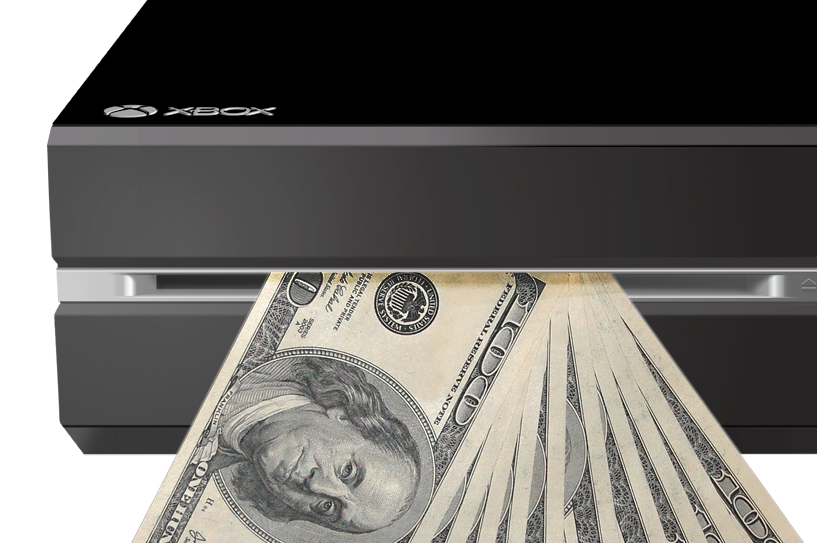
It’s probably no surprise to hear that the newly released PlayStation 4 and Xbox One both consume a lot of power, despite touting a number of new energy-saving features. According to the NRDC’s (Natural Resources Defense Council) Center for Energy Efficiency, the higher performance and always-on features result in the consoles using up to three times as much energy per year as their predecessors.
Video game consoles in the United States are projected to use more electricity annually than all the households in Houston, America’s fourth-largest city, but it’s not just playing games, or watching movies that’s using power (and draining your bank account in the process). Much of the Xbox One's operating costs come from the console waiting for you to speak to it.
NRDC measured the power required by each console during:
- Active game play
- Streaming a movie
- When the menu screen is selected (Navigation mode)
- When the console is in connected standby or completely turned off
This resulted in some interesting findings.
The Xbox One uses around 40 percent more power to play a game than the Xbox 360, and the PS4 consumes almost twice as much as the PS3. In all of the active modes, the PS4 requires more power than the Xbox One, but Microsoft’s console uses twice as much power as the PS4 when in "Instant On" (connected standby) mode.
The NRDC found the Xbox One uses more energy per year than the PS4 overall, with almost half of the Xbox One’s annual electricity usage resulting from the "always listening" feature. In waiting for you to walk into the room and say "Xbox on" the console is consuming more electricity annually than a 50-inch TV.

Truth be told, the Xbox One's total power consumption is unlikely to break the bank (or bother owners unduly), but according to the NRDC, over five years it will add up to roughly $150, or "enough to buy two or three new games".
Photo Credit: Wayne Williams
-

Time is running out: How to upgrade from Windows 8.1 Preview
Publié: décembre 19, 2013, 9:50am CET par Wayne Williams
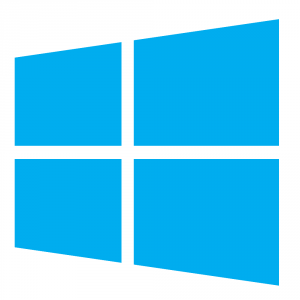 The finished version of Windows 8.1 has been out for a couple of months now, but if you’re still using the free preview build, time is running out. Windows 8.1 Preview and Windows RT 8.1 Preview are both set to expire on January 15.
The finished version of Windows 8.1 has been out for a couple of months now, but if you’re still using the free preview build, time is running out. Windows 8.1 Preview and Windows RT 8.1 Preview are both set to expire on January 15.Upgrading from the preview to the final GA release is very easy, and there are a couple of ways of doing it.
If you installed the Windows 8.1/Windows RT Preview through the Windows Store, you can update to the final release through the store too. Just click here to open the page you need and start the process. You will need to reinstall all of your apps and desktop programs afterwards, which can be very time consuming and is likely the reason why many people have put off updating the preview so far (this was my experience of it).
If you installed a volume license version of Windows 8.1 Preview, Microsoft recommends you install a fresh version of Windows 8.1 Pro or Windows 8.1 Enterprise. The company says: "If you have to upgrade an existing machine, you can do so using volume license media. This can be done by manually running SETUP.EXE from the media, or can be automated by running setup.exe /auto:data". You’ll still need to reinstall all your software afterwards.
Finally, if you want a copy of the Windows 8.1 ISO for installing fresh on any PCs, you can follow the instructions for getting one, here. Note, you will need a Windows 8 product key to get the ISO, and a Windows 8.1 key to install the OS (as you’ll be performing a fresh install, rather than an upgrade).
Are you still using the preview build? If so, what’s stopped you upgrading?
-

Apple’s new Mac Pro goes on sale tomorrow
Publié: décembre 18, 2013, 3:10pm CET par Wayne Williams
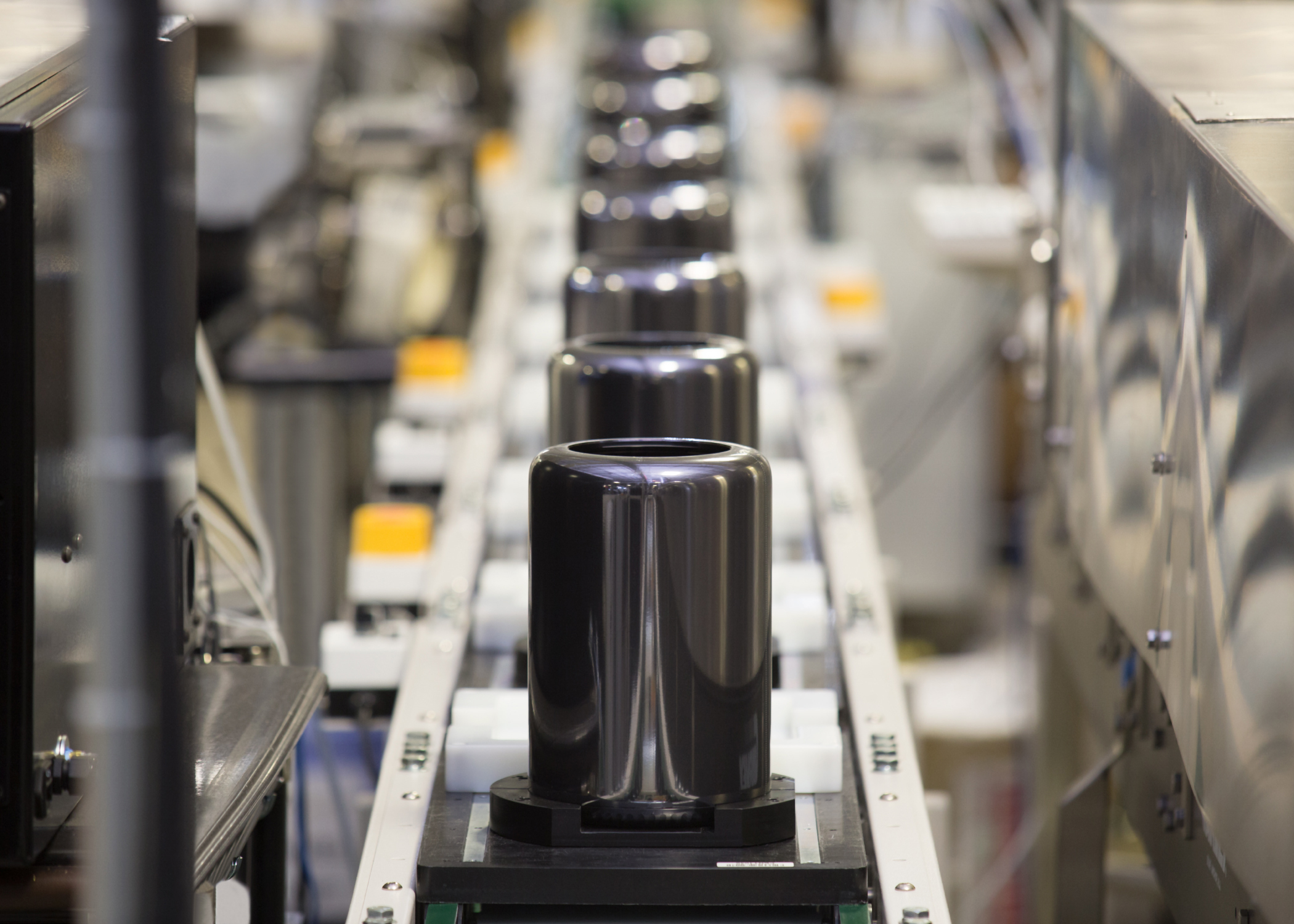
Christmas has come early for anyone looking to buy Apple’s all-new Mac Pro as the Cupertino, Calif.-based tech giant announces its striking desktop system will be available to order beginning Thursday, December 19. Act fast, and you could take one home tomorrow.
The new Mac Pro features the latest Intel Xeon processors, dual workstation-class GPUs, PCIe-based flash storage and ultra-fast ECC memory, and is available in two configurations, with prices starting from $2,999.
You’ll be able to buy it through the Apple Online Store and in brick and mortar locations, as well as through authorized resellers.
The $2,999 Mac Pro comes with a 3.7 GHz quad-core Intel Xeon E5 processor with Turbo Boost speeds up to 3.9 GHz, dual AMD FirePro D300 GPUs with 2GB of VRAM each, 12GB of memory, and 256GB of PCIe-based flash storage. The $3,999 model boasts a 3.5 GHz 6-core Intel Xeon E5 processor with Turbo Boost speeds up to 3.9 GHz, dual AMD FirePro D500 GPUs with 3GB of VRAM each, 16GB of memory, and 256GB of PCIe-based flash storage.
If you need a little more power, there are configure-to-order options available with faster 8-core or 12-core Intel Xeon E5 processors, AMD FirePro D700 GPUs with 6GB of VRAM, up to 64GB of memory, and up to 1TB of PCIe-based flash storage. Additional technical specifications, configure-to-order options and accessories are available online at www.apple.com/mac-pro.
-

Xbox One now available in real gold
Publié: décembre 16, 2013, 8:55am CET par Wayne Williams
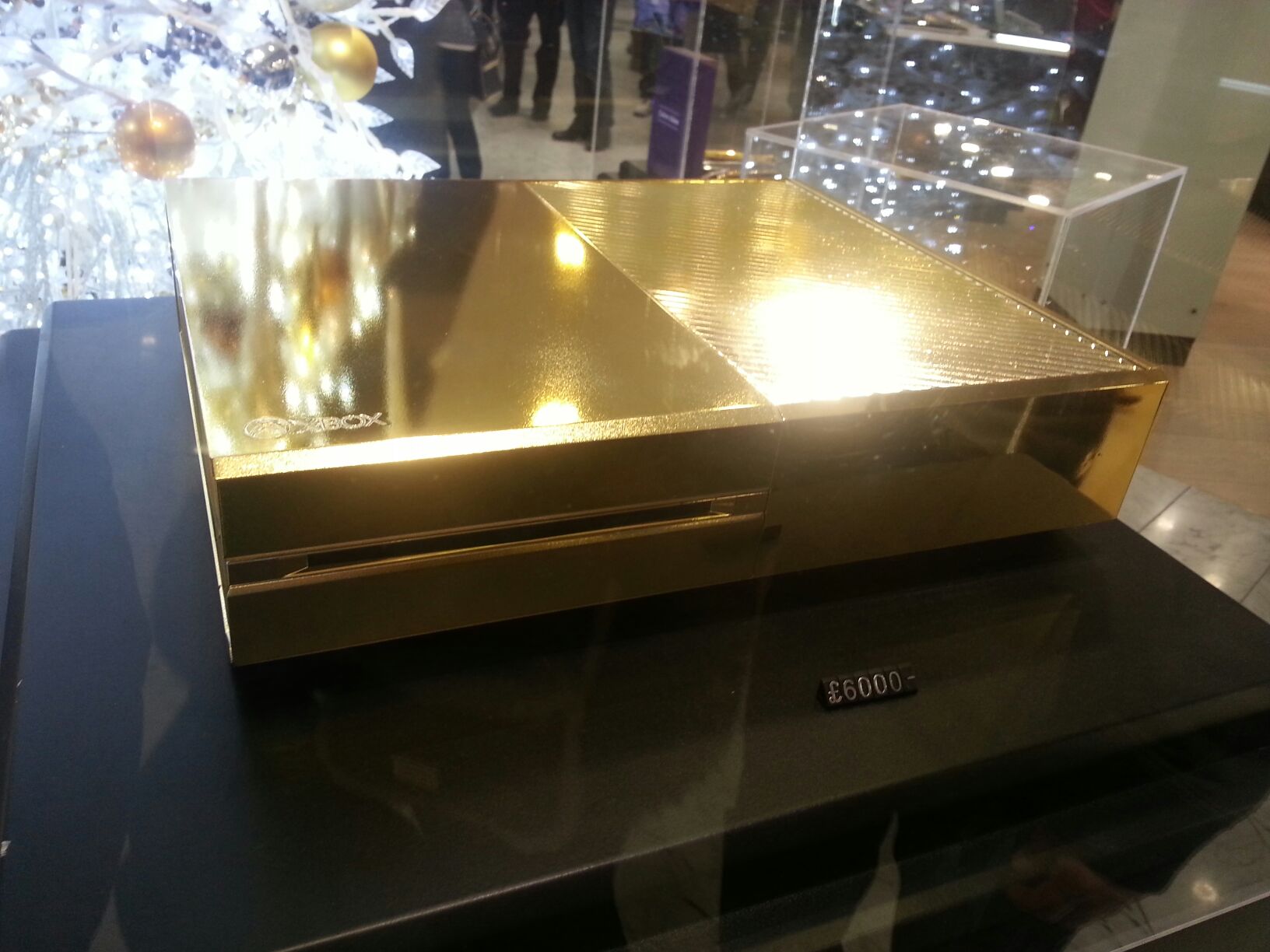
What do you get the person who has everything (except good taste) for Christmas? How about an Xbox One plated in real gold?
Yes, forget your gold iPhone, with its fake, not actually gold coloring, London department store Harrods is selling a special luxury edition of Microsoft's latest games console plated in 24-karat yellow metal, buffed to a high shine.
Spotted, and photographed, by Reddit user SirSyhn, the golden One -- which is only available in-store -- sells for a wallet-bothering £6000/$9,796.
I expect you’re wondering exactly what you get for your money, right? And the answer is an ordinary Xbox One covered in gold. No games, not even a complementary Xbox Live Gold membership, which seems like a missed trick.
The picture doesn’t show the controllers or Kinect, so it’s possible those haven’t been given the bling bling makeover, which is a shame. A gold Xbox One with black controllers? How tacky.
-

A Start button and menu won't save Windows 8.x, but Windows 7 could
Publié: décembre 13, 2013, 2:18pm CET par Wayne Williams

I know what you’re thinking -- BetaNews doesn’t need yet another Start button/menu story surely! But actually, I think we do, so bear with me. My colleague Brian Fagioli believes that Microsoft most definitely shouldn’t restore the Start menu in a future version of Windows, and in fact wants the OS to run "legacy" (aka desktop) software full screen like a Modern app. Mark Wilson on the other hand, thinks Microsoft should re-introduce the menu and leave the Modern UI to tablets.
Both are interesting viewpoints, and the comments accompanying the articles show that there’s a firm split in opinion among Windows users. But the Start button and menu isn’t a magic bullet. Adding it to Windows 8.2, aka "Threshold", or even bringing it back to Windows 8.1 as a mini update, as some tech watchers have suggested could happen, won’t save the day. There’s too much negativity surrounding the tiled OS -- and that’s what Microsoft really needs to work to fix.
Let’s jump back in time a couple of years. Microsoft sees dwindling PC sales, and the rise of tablets and touch screens as an opportunity to re-invent Windows, and make the OS -- and itself -- more relevant. The software giant came to the mobile party far too late and doesn’t want to make the same mistake by missing out on the tablet revolution. Doing nothing -- rolling out a new version of Windows 7, with a fresh coat of paint and some re-tooled bundled applications -- is not an option. It can’t simply ignore the sea of change happening around it. So it comes up with a great idea -- an operating system designed for touch, that will run on tablets, but which also has a desktop mode that will allow the OS to run legacy software while users and hardware manufactures catch up. It will likely be a year before touch is everywhere, but when it is, Windows 8 will be ready.
The idea is risky, but could work. And Microsoft needs to take that gamble. There are other reasons to switch to an app based system including the number one motive for a business to do anything -- a fresh revenue stream. Microsoft has seen old rival Apple suddenly transform itself to become the darling of the tech world, and at the heart of that transformation is an app ecosystem which allows the Cupertino, Calif.-based firm to make money -- a lot of money -- from someone else’s hard work.
Ultimately, Microsoft had no option but to create Windows 8, but what it failed to properly address was the consumers’ resistance to change.
Windows 8 was too different, too touch orientated, and too difficult to use. People who didn’t own touch hardware, and that was pretty much everyone, found themselves confronted with an OS that hadn’t been designed for them. That had been designed, seemingly, for touch devices they didn’t own, and which had been created to make life difficult. Launching programs had been made slower, and more annoying, and Microsoft was pushing them to use apps, but then not offering a decent selection, and making them available in possibly the worst designed app store ever.
Perhaps most alienating of all, these apps all run full screen -- which is what you need on a tablet -- and look weird and over-sized on a large screen desktop system or laptop. Suddenly the Windows we’re all used to has become Window. A far less useful OS designed for single-tasking.
You know all this of course. But I wanted to just go over old ground, to remind everyone how we got here. Reviews of Windows 8 weren’t kind. Chris Pirillo called the OS "a monkey with four asses" and my colleague Joe Wilcox said it was like a bad blind date – "stunning, sexy and sultry. But you can't live with her".
Users who switched to Windows 8 mostly fell into two camps -- those who added a third-party Start menu, to make the OS much more usable on the desktop -- and those who embraced the change and learned to love it. I went the third way, and used it as was, but hated it. I never believed those people who said it was great, or claimed glibly that anyone who didn’t like it was "using it wrong". Rubbish. It wasn’t a monkey with four asses, it was a half-assed monkey released far too early in an effort to arrive before touch went fully mainstream.
Windows 8.1 is a great OS, and I love it. It fixes many of the problems of its predecessor, and is more usable on desktop systems. Touch hardware has arrived in great numbers, and while consumers aren’t rushing to replace their aging systems, it’s at least available now. Microsoft reintroduced the Start button, and added an Apps screen, which is like a giant Start menu, both decent compromises.
But consumers still aren’t buying.
Windows 8.x is viewed as an operating system designed purely for touch systems. Consumers who don’t own touch-screen PCs or Windows compatible tablets, feel it’s not for them. The OS has a reputation -- a stink -- that it can’t shake off. Ask anyone who has never used Windows 8.x what they know about the OS and they’ll tell you it’s designed for touch, difficult to use, app-orientated -- even though there are NO apps for it -- and the lack of a proper Start button and menu makes it difficult and slow to use on a desktop system or laptop.
None of that is really true now. I can launch legacy programs directly in Windows 8.1 at least as quickly as I could in Windows 7. I don’t own a touch screen PC but I don’t feel I’m missing out in any way. And there’s plenty of great apps available in the app store.
I don’t miss the Start button and menu, but if I did I could always add a third-party one anyway. There are plenty of great choices. Its absence isn’t what’s killing Windows 8.x adoption.
The missing Start button and menu is a rallying cry behind which the Windows 8.x haters have gathered, but restoring it won’t suddenly persuade the masses to make the switch. Microsoft will need to make more sweeping changes than bundling an optional UI with a future version of Windows. Nothing less than scrapping the whole Modern UI will be enough to get resistant consumers on board at this juncture.
So Microsoft has two choices. It can push on with its vision of a future-proofed touch-orientated OS, making just enough concessions to get the fence sitters to try it, or it can U turn and add a Start menu and an option to hide the Modern UI, and hope that’s enough. As with all compromises, it probably won’t be.
There is a third way though. Microsoft already has a beloved OS with a Start screen and menu that’s selling well (selling better than Windows 8.x in fact) -- Windows 7.
Instead of hamstringing its new touch OS with features from the past, why not simply update the older OS, giving it the core and best (non-touch) elements of Windows 8.x and present that to desktop users? Call it Windows 7.5, or Windows Legacy, sell it for a not-unreasonable price, and make upgrading to Windows 8.x or 9, simple and free (or also low cost). Get people to take two steps into the future, instead of one. That way everybody wins.
When Microsoft first started work on a new operating system, simply updating Windows 7 wasn't an option. Now it could be the solution the tech giant so desperately needs.
Photo Credit: twobee/Shutterstock
-

Microsoft slashes the price of the first-gen Surface Pro -- 64GB model already sold out
Publié: décembre 12, 2013, 8:48pm CET par Wayne Williams
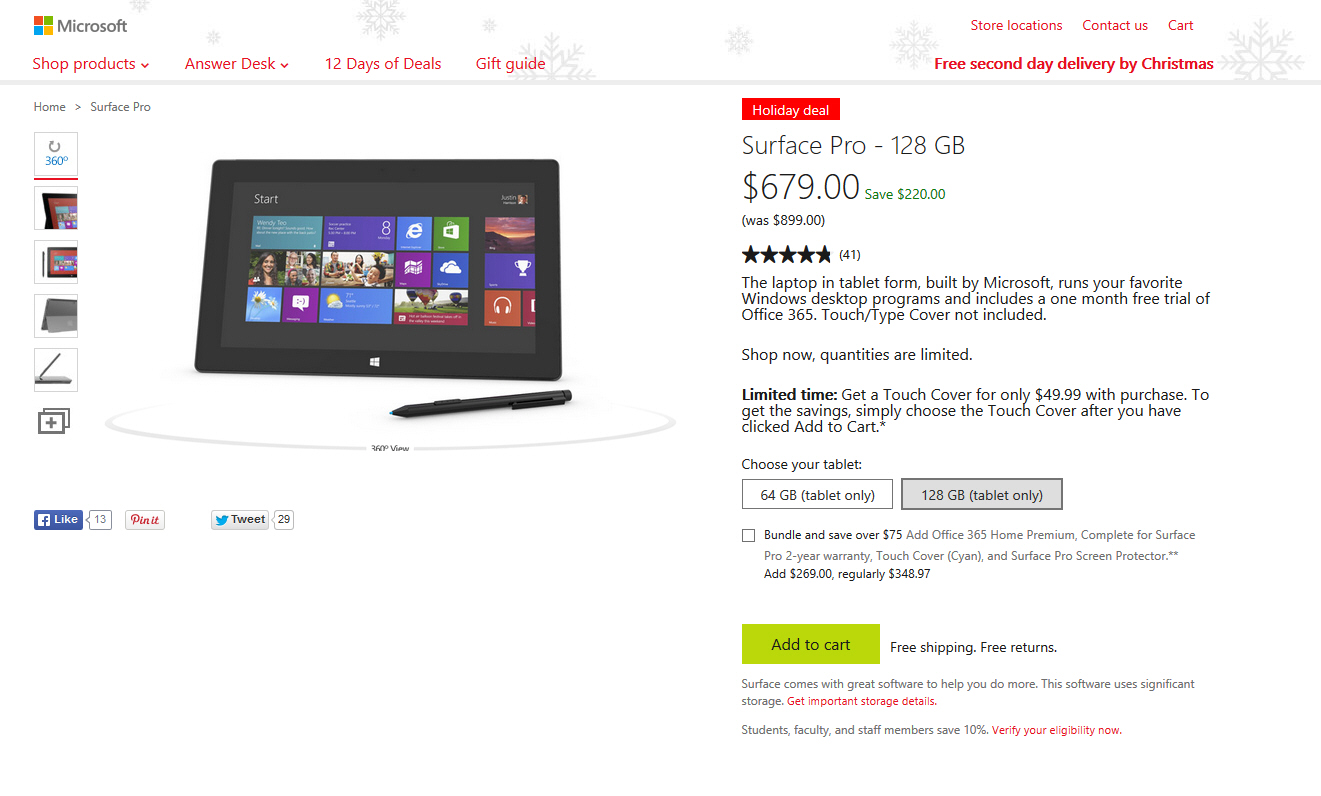
If you’ve been putting off buying Microsoft’s slate until the price dropped a little, now’s your chance to pick up a bargain. As part of a holiday deal at the Microsoft Store, the devices and services giant has slashed $200 off the price of the 64GB version of the first-generation Surface Pro, and $220 off the 128GB model.
This brings the price of the 64GB slate down to $599 from $799. The larger capacity model is now $679, as opposed to $899. The price of the Touch Cover has been reduced to $49.99 also, so you may want to pick one of those up at the same time. The price includes free shipping and free returns.
Unfortunately, the 64GB model is currently out of stock, and there’s no telling how many of the 128GB model are left. The page says only that "quantities are limited".
The original Surface Pro features a 3rd generation Intel Core i5 Processor with Intel HD Graphics 4000, 4GB RAM, 10.6 inch ClearType HD Display with a 1920 by 1080 resolution, as well as two 720p HD cameras (front and rear-facing).
It comes with Windows 8 as standard, but you can upgrade to Windows 8.1 for free.
This isn’t the first time Microsoft has reduced the price of Surface Pro (it was cut by $100 dollars when Surface Pro 2 launched), and likely won’t be the last reduction we see, but if you want to treat yourself to the slate in time for Christmas (and don't mind that it's not the latest model), be sure to hurry along to the store before it’s too late.
-

Don’t wait for Windows 'Threshold', get a Start button and menu in Windows 8.1 NOW
Publié: décembre 11, 2013, 4:36pm CET par Wayne Williams
 According to Microsoft watcher Paul Thurrott, Windows 8.2, or "Threshold" as it’s apparently being referred to internally at Microsoft, could see the return of the Start menu for desktop users. "After bringing back the Start button in Windows 8.1, Microsoft will take the next logical step in the next Windows version and make the Start menu available as an option. It's possible this will appear only on those product versions that support the desktop", claims Thurrott. He also suggests Threshold will allow users to run some Modern UI apps on the desktop, as you can using ModernMix.
According to Microsoft watcher Paul Thurrott, Windows 8.2, or "Threshold" as it’s apparently being referred to internally at Microsoft, could see the return of the Start menu for desktop users. "After bringing back the Start button in Windows 8.1, Microsoft will take the next logical step in the next Windows version and make the Start menu available as an option. It's possible this will appear only on those product versions that support the desktop", claims Thurrott. He also suggests Threshold will allow users to run some Modern UI apps on the desktop, as you can using ModernMix.The absence of a real Start button and menu is seen by many as one of the main reasons why Windows 8.x is doing so badly. The Start button and Apps screen in Windows 8.1 is -- for me -- a great compromise, but it seems many consumers would rather just have things back how they were, and if Thurrott is right those disgruntled users might finally get their wish when Threshold arrives sometime in 2015. Don’t want to wait that long to get a proper Start menu in Windows 8.x? The good news is there are plenty of quality third-party options available now.
Although I’ve covered alternative Start buttons and menus here before, it doesn’t hurt to take a fresh look at what’s available, especially as most of them have been recently updated to function properly under Windows 8.1.
This list is by no means exhaustive, but it will provide a good starting point if you’re struggling to get along with the Modern UI in Windows 8 or 8.1, or want to upgrade to the tiled OS but are put off by absence of a real Start button and menu.
Free
Classic Shell (last updated 20 October with some minor compatibility tweaks and fixes). My personal favorite Start menu and highly recommended.
StartW8 (last updated 25 October with new features and full Windows 8.1 support).
IObit StartMenu8 (last updated 2 December).
Not Free
Start8 (last updated 5 December). Priced at $4.99, and there’s a 30-day trial version available.
8StartButton (last updated 3 December). Although there is a free version, it has limited functionality. The paid edition costs $9.95 (plus taxes).
StartIsBack+ (last updated 8 November). The + version is specifically for Windows 8.1. There’s also a separate version for Windows 8. Both cost $2.99 (for one PC). There’s a 30-day trial available.
RetroUI Pro (last updated 4 November). There are different versions for Windows 8 and 8.1 and the program costs $4.95. There’s a 7-day trial or you can get a free license by liking the RetroUI page on Facebook.
Hate the Start Button?
If you’re not a fan of the new Start button Microsoft added to Windows 8.1, and prefer the cleaner look of Windows 8, you can remove the button entirely, using the free StartIsGone.
-

The Walk is a 500 mile thriller where every step counts
Publié: décembre 11, 2013, 3:22pm CET par Wayne Williams
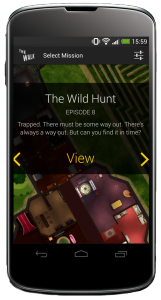 I’m a huge fan of Zombies, Run! The immersive app, available for iOS and Android, helped me to lose weight and get fit again, providing the motivation I needed to run on a regular basis. If you’ve not heard of it, the app is a bit like a radio play that unfolds between songs and turns a real-world run into an entertaining journey through the zombie apocalypse.
I’m a huge fan of Zombies, Run! The immersive app, available for iOS and Android, helped me to lose weight and get fit again, providing the motivation I needed to run on a regular basis. If you’ve not heard of it, the app is a bit like a radio play that unfolds between songs and turns a real-world run into an entertaining journey through the zombie apocalypse.Now the developers behind that app, Six to Start and Naomi Alderman, have released a new fitness tracker and game for iPhone, iPod touch and Android devices, which is designed to help players incorporate more walking into their everyday lives.
The Walk has been funded by the UK’s Department of Health and the National Health Service (NHS) and like Zombies, Run! is story based. There are no undead shamblers in this particular app, however. Instead, following a bomb explosion at Inverness station you find yourself carrying a package that could save the world. It's a gripping thriller, in the same vein as classics like North by Northwest or The 39 Steps.
The app adapts to how many steps you can manage in a day and won’t expect you to suddenly start going out on long walks (although that’s the ultimate hope). It’s estimated the game will take around three months to complete (nearly long enough to virtually travel the length of the UK) and audio story clips and mysterious clues are unlocked as you walk.
Adrian Hon, CEO of Six to Start, says, "The Walk is a truly unique app. We don’t just record your daily steps -- we provide the motivation for players to literally go that extra mile, and we’re twenty times more affordable than other fitness tracking devices. We also have unique partners in the Department of Health and the NHS, who both recognise the power of apps to improve everyone’s people’s health and save millions of pounds".
Naomi Alderman, co-creator and lead writer, adds, "We already know from Zombies, Run! that a great story can motivate people of all fitness levels to move more. I’m particularly proud of the immersive world we’ve created in The Walk -- with engaging characters and a gripping story but also a host of maps, newspaper cuttings, audio artefacts and even a comic strip you’ll find to help you work out who did plant that bomb in Inverness station, and why. The Walk is designed to be addictive, in the best possible way".
The Walk is available now from the App Store and Google Play. The regular price is $4.99 (£2.99 / €4.49), but there’s currently 20 percent off, so you can pick it up for $3.99 (£2.49 / €3.59).
-

The stats don't lie: Windows 8.1 seriously underperforming compared to Windows 7
Publié: décembre 9, 2013, 12:07pm CET par Wayne Williams
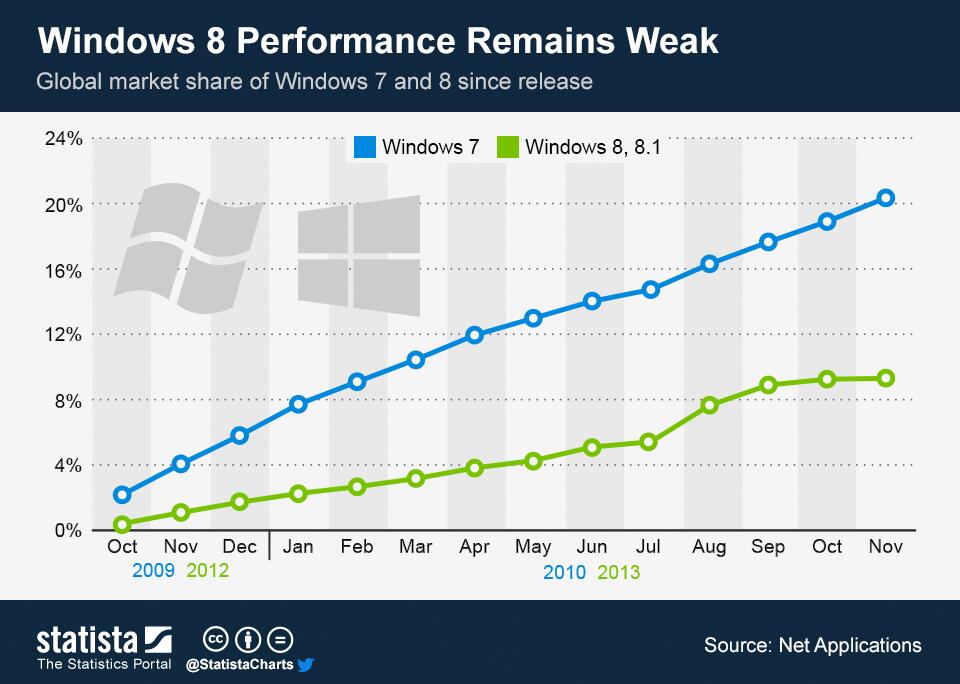
Following Windows market share on NetApplications, as I do every month, it’s clear to me that Windows 8.x isn’t the hit Microsoft hoped for. There are several reasons for this, all of which I’ve discussed previously -- dwindling PC sales, users dislike of touch and the Modern UI, and so on.
Last month Windows 7’s growth outpaced that of Windows 8.x by four fold, and it’s not the first time the older OS has proven the more popular choice either. It’s becoming something of a regular occurrence. Adoption of the tiled OS is slow, very slow. Especially compared with the strong pick up Windows 7 enjoyed from the start.
Statista has taken global market share of both Windows 7 and Windows 8/8.1 since launch and plotted the growth on a chart, and the difference is stark. While Windows 8.x has a respectable sounding 9.3 percent of the global market as of the end of last month, Windows 7 had claimed over twice that in the same time period (fourteen months).
And that’s not the worst part. While the Windows 7 graph shows a steep upwards trend, Windows 8.x growth is clearly slowing, and heading for a plateau. The launch of Windows 8.1 gave the OS a significant bump, but now the appeal is waning it seems.
It’s easy to make excuses for Windows 8.x’s failure to perform. Windows 7 adoption was higher because it followed the half-baked Windows Vista -- users on XP wanted a newer OS to switch to, and users on Vista wanted to get off it, quickly. Windows 7 was, and still is, hugely popular, and Windows 8.x is struggling to follow it.
But, however you look at things, Windows 8.1 was released a mere two months ago, and instead of the upwards curve you'd expect following a major launch we’re seeing significant slowdown.
It’s possible sales over the holiday period will boost market share for the tiled OS, and restart the (short-lived) growth spurt Windows 8.1 experienced at launch, but it would take a brave man to bet on that outcome.
Microsoft is advertising its new OS everywhere, the software is on all new PCs, but still consumers don’t seem interested. What else can the software giant do to boost Windows 8.x adoption?
Photo credit: Igor Kovalchuk/
-

Get more from your Xbox One with tips from Major Nelson
Publié: décembre 6, 2013, 11:35am CET par Wayne Williams
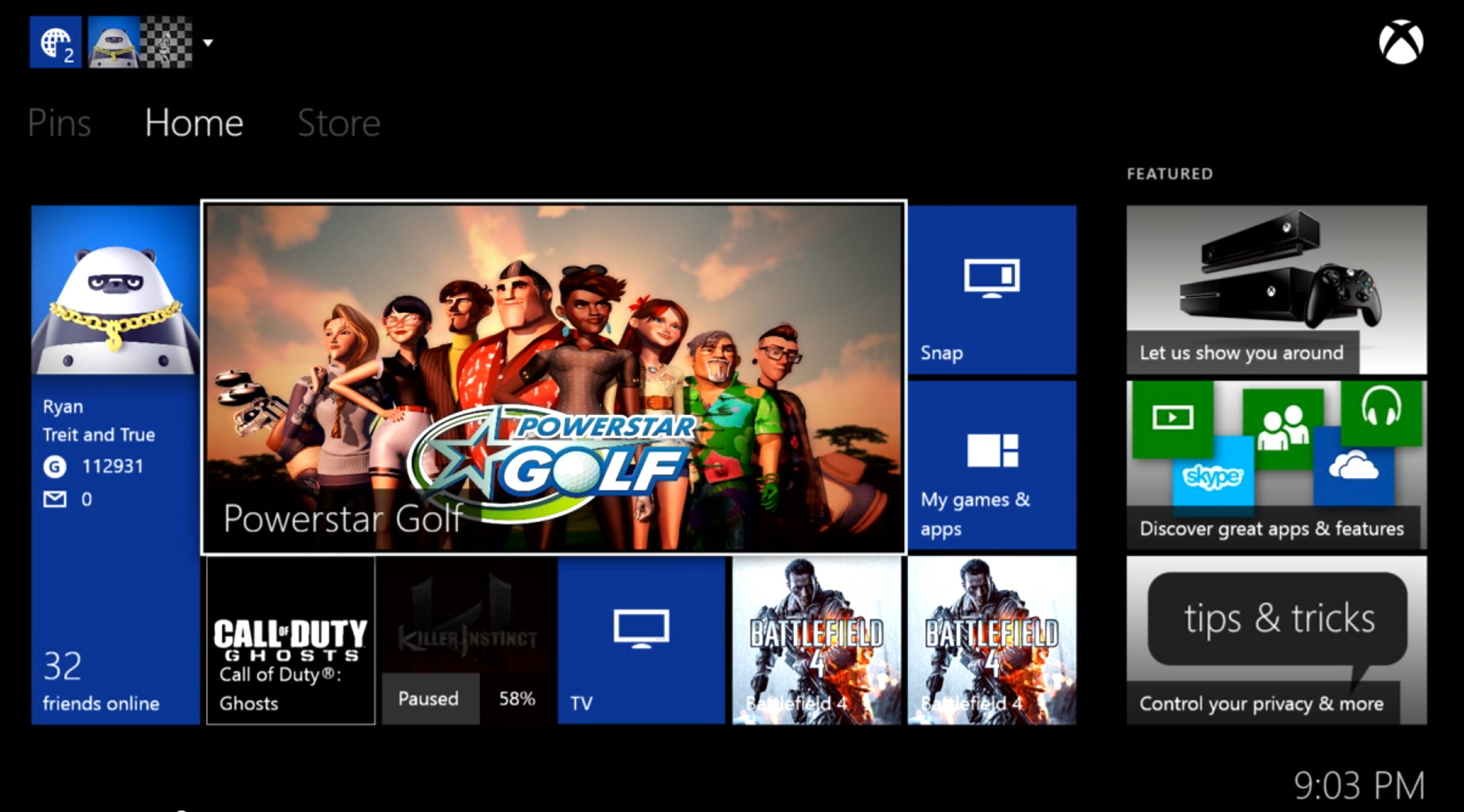
Whether you’re the proud owner of a shiny new (and hopefully problem free) Xbox One, or you’re thinking of getting one soon, Microsoft has plenty of great resources to help you get the most from the console, including this cheat sheet covering voice and gesture commands.
In the lead up to the launch Microsoft also released a string of videos highlighting what’s possible with the Xbox One, including how you can use Bing to search for entertainment, and showing off SkyDrive integration, as well as this great video exploring what it’s like to actually use the Xbox One. Even though the console is out now, Microsoft is continuing to release videos and the latest one offers tips and tricks narrated by Larry Hryb, Xbox LIVE's Major Nelson.
The three minute video starts with Hyrb demonstrating the context-sensitive menu button that can be used to pin items to Home, make parties invite only, and change the order of your download queue. Next he demonstrates some of the more useful voice commands and finally looks at app switching. You can watch the video in full below.
-

Microsoft's Digital Crimes Unit successfully disrupts the ZeroAccess botnet
Publié: décembre 6, 2013, 9:49am CET par Wayne Williams
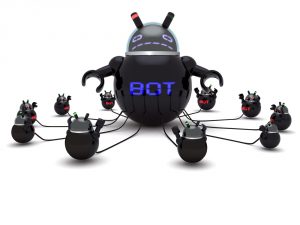 Three weeks ago Microsoft unveiled its new Cybercrime Center. Housed in a unit on the tech giant’s campus in Redmond, Wash. the center was created to tackle a wide range of internet crimes including malware, botnets, intellectual property theft and online child exploitation.
Three weeks ago Microsoft unveiled its new Cybercrime Center. Housed in a unit on the tech giant’s campus in Redmond, Wash. the center was created to tackle a wide range of internet crimes including malware, botnets, intellectual property theft and online child exploitation.Working with Europol’s European Cybercrime Centre (EC3), the FBI, and A10 Networks, Microsoft's Digital Crimes Unit has just claimed a major victory, successfully disrupting the Sirefef botnet, also known as ZeroAccess.
This botnet is a particularly nasty piece of work and according to Microsoft is "responsible for infecting more than two million computers, specifically targeting search results on Google, Bing and Yahoo search engines". It hijacks results and redirects people to potentially dangerous sites, as well as using click fraud to steal ad money. With more than 800,000 ZeroAccess infected computers active on the Internet every day, the botnet is estimated to have cost online advertisers around $2.7 million each month.
While the legal and technical action hasn’t wiped out the botnet entirely -- ZeroAccess has been designed to resist such disruption efforts -- it will have a significant impact on its effectiveness.
"The coordinated action taken by our partners was instrumental in the disruption of ZeroAccess; these efforts will stop victims’ computers from being used for fraud and help us identify the computers that need to be cleaned of the infection,” said David Finn, executive director and associate general counsel of the Microsoft Digital Crimes Unit. "Microsoft is committed to working collaboratively -- with our customers, partners, academic experts and law enforcement -- to combat cybercrime. And we’ll do everything we can to protect computer users from the sinister activities and criminal networks that victimize innocent people and businesses around the world".
Microsoft has a history of taking down botnets. This is its eighth such victory in the past three years and the second time in six months that the company has worked with law enforcement agencies to successfully disrupt a prevalent threat.
"If the hacker community has not yet taken notice, today’s disruption of the ZeroAccess botnet is another example of the power of public-private partnerships," FBI Executive Assistant Director Richard McFeely said. "It demonstrates our commitment to expand coordination with companies like Microsoft and our foreign law enforcement partners -- in this case, Europol -- to shut down malicious cyberattacks and hold cybercriminals accountable for exploiting our citizens’ and businesses’ computers".
More information about the coordinated action against ZeroAccess can be found on the Official Microsoft Blog.
Image credit: Gunnar Assmy/Shutterstock
-

What changes should Microsoft implement in Windows 'Threshold'?
Publié: décembre 5, 2013, 3:55pm CET par Wayne Williams

Microsoft took a huge gamble with Windows 8, reinventing its operating system for tablets and touch screen PCs. Unfortunately, when it was first released there really weren’t many touch devices for it to run on, and the majority of desktop users (myself included) hated the bolted on full screen Modern UI that replaced the traditional Start menu.
With Windows 8.1, a lot of the complaints aimed at the tiled OS have been addressed. Desktop users can pretty much avoid the Modern UI altogether, and overall 8.1 is a much more polished affair. Despite the improvements and near ubiquity on new hardware, Windows 8/8.1 is still struggling to find an audience. Last month, Windows 7’s growth was four times that of the newer OS. So where does Microsoft go from here? Mary Jo Foley of the All About Microsoft blog reports the answer is "Threshold".
Microsoft is at something of a crossroads, with four similar, yet different, operating systems -- Windows 8.1, Windows Phone 8, Windows RT and the Xbox One OS. In a recent UBS seminar in Sausalito, California, Julie Larson-Green, executive vice-president of Devices and Studios at Microsoft, said: "We have the Windows Phone OS. We have Windows RT and we have full Windows. We're not going to have three". A lot of people took that statement to mean RT would be phased out, or converged with Windows Phone.
Foley says Threshold (the codename derives from a planet in the original Halo game) will be a "wave of operating systems across Windows-based phones, devices and gaming consoles" and bring the Xbox One, Windows and Windows Phone operating systems closer together.
As well as linking to a single app store, and making it easier for developers to create apps able to run across all devices, Foley says Threshold "will add another level of commonality across Microsoft's various Windows-based platforms" and "support the same core set of 'high value activities'". In July, CEO Steve Ballmer sent out a reorganization email to Microsoft employees, in which he categorized these high value activities as "serious fun, meetings, tasks, research, information assurance and IT/Dev workloads".
Foley’s article is light on details -- it’s just a name really, and some talk about shared commonality. But at this point, provided her information is correct, that’s to be expected.
The "shared commonality" aim is definitely a real thing, as Executive Vice President Terry Myerson is in charge of a new unified operating system engineering group at Microsoft designed for that very purpose. The different operating systems share many common elements already, yet are currently poles apart in many of the areas where it really matters. Tying them closer together is a serious no brainer.
Microsoft is working on bringing Windows Phone 8.1 out in spring next year, and will deliver a Windows 8.1 update, called "Windows 8.1 update 1" at around the same time, according to Foley (personally, I’d like it to be called "Windows 8.11" in a nod to the past). Threshold, is expected to arrive a year later. If that timescale is correct, it means Microsoft doesn’t have all that long to make sweeping wholesale changes, but if the primary aim is to unify the core elements of the existing operating systems without reinventing the wheel then it’s doable.
If you were in charge of Windows, what changes would you be looking to introduce to the next version of the OS?
Image credit: wavebreakmedia/Shutterstock
-

The PC is dying, and the tablet's future isn't looking so healthy now either
Publié: décembre 4, 2013, 1:09pm CET par Wayne Williams
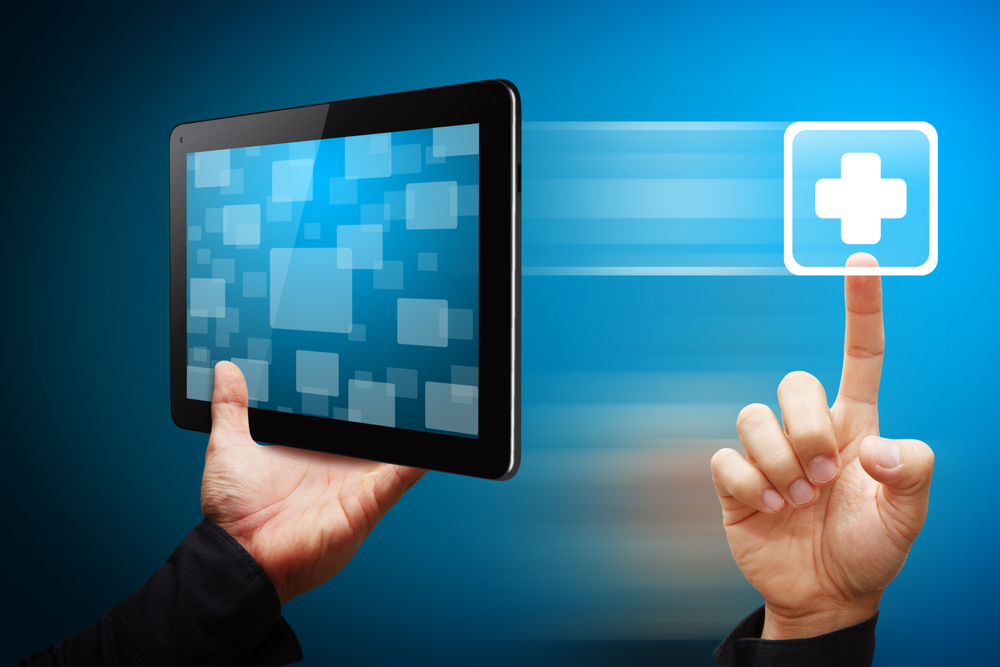
There are several explanations as to why PC sales are so dire. Users have few compelling reasons to upgrade -- existing systems can still run all the latest software, and touch really isn’t the major selling point that manufacturers believe it to be. The rise of the tablet has played a major role in the PC’s demise too, providing casual users with a more flexible alternative.
While tablets have enjoyed rapid growth over the past couple of years, and phenomenal sales numbers will surely be racked up this holiday season, the International Data Corporation (IDC) has sounded a word of caution, lowering its tablet shipment forecasts, and predicting growth to start slowing by as soon as next year.
IDC’s Worldwide Quarterly Tablet Tracker expects global tablet shipments to reach 221.3 million units in 2013. This is down marginally from IDC’s previous forecast of 227.4 million, but still 53.5 percent higher than 2012 levels. 2014 shipments are predicted to reach 270.5 million units, showing much slower 22.2 percent year over year growth. By 2017, IDC believes annual market growth will have slowed significantly to single-digit percentages and shipments to have peaked at 386.3 million units. This is down some 20.7 million units from IDC’s previous forecast.
So what’s the reason for shrinking tablet shipments? Phablets. As Michelle Smith said in her What's next for tablet technology? piece, these oversized smartphones are great for users (with big pockets) who don’t want to double up on data plans or lug around both a phone and a tablet. IDC explains the appeal thusly: "The market has trended toward small tablets in a big way over the last 24 months, but the rise of large phones could well push consumers back toward larger tablets as the difference between a 6-inch smartphone and a 7-inch tablet isn't great enough to warrant purchasing both".
"In some markets consumers are already making the choice to buy a large smartphone rather than buying a small tablet, and as a result we've lowered our long-term forecast," says Tom Mainelli, research director, Tablets. "Meanwhile, in mature markets like the US where tablets have been shipping in large volumes since 2010 and are already well established, we're less concerned about big phones cannibalizing shipments and more worried about market saturation".
IDC sees a transition towards larger devices, something that will benefit Windows, although don’t expect Windows 8.1 slates to start selling close to iPad or Android tablet levels any time soon.
"For months, Microsoft and Intel have been promising more affordable Windows tablets and 2-in-1 devices," says Jitesh Ubrani, research analyst, Worldwide Tablet Tracker. "This holiday season, we expect a huge push for these devices as both companies flex their marketing muscles; however we still don't expect them to gain much traction. We're already halfway through the holiday quarter, and though there have been some relatively high-profile launches from the likes of Dell, HP, and Lenovo, we've yet to see widespread availability of these devices, making it difficult for Windows to gain share during this crucial period".
Tablet OS Market Share, 2012 - 2017
Tablet OS 2012 Market Share
2013 Market Share*
2017 Market Share*
Android 52.0%
60.8%
58.8%
iOS 45.6%
35.0%
30.6%
Windows 0.9%
3.4%
10.2%
Other 1.4%
0.8%
0.4%
Grand Total 100.0%
100.0%
100.0%
Source: IDC Worldwide Quarterly Tablet Tracker, December 2013
* Forecast
iChartsPhoto Credit: watcharakun/Shutterstock
-

Global PC shipments record sharpest annual decline EVER
Publié: décembre 3, 2013, 4:06pm CET par Wayne Williams

It seems like we’re forever posting stories about the decline of the PC, and here’s another one. This time, IDC is delivering the bad news, and make no mistake, it is bad news. Catastrophic news in fact, because IDC says worldwide PC shipments are experiencing the "most severe yearly contraction on record".
Shipments were expected to fall by 9.7 percent in 2013, but IDC has revised that estimate to a worse 10.1 percent. Next year the outlook isn't expected to be quite as bad, but things are still going to be very bleak, even in emerging markets, the traditional primary growth area for the PC.
PC shipments are expected to fall by an additional 3.8 percent in 2014, before staging a minor recovery. IDC says "At these rates, total PC shipments will remain just above 300 million during the forecast -- barely ahead of 2008 volumes".
The biggest collapse is in the consumer market, with shipments declining a whopping 15 percent year on year. In the commercial market, shipments fell by just 5 percent. IDC explains "The relative stability is due to a mix of more stable PC investment planning, a smaller impact from tablets, and to replacements of Windows XP systems before the end of support planned for 2014". Don’t get the champagne out just yet though as IDC sounds a word of caution. "However, the long-term outlook for the two markets is not significantly different, with a small decline projected for both consumer and commercial segments in 2014 with near flat growth in the longer term".
"Perhaps the chief concern for future PC demand is a lack of reasons to replace an older system," said Jay Chou, Senior Research Analyst, Worldwide Quarterly PC Trackers at IDC. "While IDC research finds that the PC still remains the primary computing device -- for example, PCs are used more hours per day than tablets or phones -- PC usage is nonetheless declining each year as more devices become available. And despite industry efforts, PC usage has not moved significantly beyond consumption and productivity tasks to differentiate PCs from other devices. As a result, PC lifespans continue to increase, thereby limiting market growth".
Loren Loverde, Vice President Worldwide Quarterly PC Trackers adds: "The emergence of 2-in-1 devices designed to function in both clamshell and slate configurations -- many of which will run Windows -- along with Windows-based tablets themselves, is expected to provide some new volume for the Windows platform as well as the PC vendors and other parts of the traditional PC ecosystem in coming years. The Windows-based tablet market (covered in IDC's Worldwide Quarterly Tablet Tracker) is expected to grow to 39.3 million units in 2017 from less than 7.5 million in 2013 and less than 1 million in 2011. However, relative to a PC market size of roughly 300 million units, these Windows tablets would add just a couple percent a year relative to PC growth. Even so, these Windows devices are projected to account for 10 percent of a combined PC & Windows Tablet market by 2016 -- making them an important growth segment for the PC ecosystem".
PC Shipments by Region and Form Factor, 2012-2017 (Shipments in millions)
Region Form Factor 2012
2013*
2017*
Emerging Markets Desktop PC 94.8
85.3
78.2
Emerging Markets Portable PC 110.4
96.8
106.0
Emerging Markets Total PC 205.2
182.1
184.3
Mature Markets Desktop PC 53.5
50.3
42.7
Mature Markets Portable PC 90.6
81.8
78.1
Mature Markets Total PC 144.1
132.0
120.8
Worldwide Desktop PC 148.3
135.6
121.0
Worldwide Portable PC 201.1
178.6
184.1
Worldwide Total PC 349.4
314.2
305.1
Source: IDC Worldwide Quarter PC Tracker, November 2013
* Forecast data
PC Shipment Growth by Region and Form Factor, 2012-2017
Region Form Factor 2012
2013*
2017*
Emerging Markets Desktop PC -3.9%
-10.0%
-1.2%
Emerging Markets Portable PC 0.5%
-12.3%
4.8%
Emerging Markets Total PC -1.6%
-11.3%
2.2%
Mature Markets Desktop PC -4.7%
-6.0%
-3.9%
Mature Markets Portable PC -8.5%
-9.8%
-1.3%
Mature Markets Total PC -7.2%
-8.4%
-2.2%
Worldwide Desktop PC -4.2%
-8.6%
-2.2%
Worldwide Portable PC -3.8%
-11.2%
2.1%
Worldwide Total PC -4.0%
-10.1%
0.4%
Source: IDC Worldwide Quarter PC Tracker, November 2013
* Forecast data
Photo Credit: Huguette Roe/Shutterstock
-

5 things to be thankful for in Windows 8.1
Publié: novembre 28, 2013, 3:40pm CET par Wayne Williams
 It’s Thanksgiving in the US today (as if you didn’t know) so I’m using that as a feeble excuse to give thanks to Microsoft for some of the best features found in its new operating system. As someone who pretty much detested the turkey that was Windows 8 from the moment I installed it to the moment I updated it, I’m constantly surprised by how much I like the new incarnation.
It’s Thanksgiving in the US today (as if you didn’t know) so I’m using that as a feeble excuse to give thanks to Microsoft for some of the best features found in its new operating system. As someone who pretty much detested the turkey that was Windows 8 from the moment I installed it to the moment I updated it, I’m constantly surprised by how much I like the new incarnation.I appreciate Windows 8.1 is not for everyone, but if you persevere with it for a while, and can let go of the old ways, you’ll find it’s actually a great operating system. Controversially, I’d have to say it’s maybe my favorite OS of all time. Sure, as a desktop user there are some things I hate about it, but the pluses easily outweigh the minuses -- for me anyway. Here are five of the features I like best.
The Taskbar and Navigation Properties
If you’re a desktop user, this should be your first port of call as soon as you fire up Windows 8.1 for the first time. Right-click the taskbar, go to Properties and start customizing the OS to suit your needs. The Navigation tab lets you disable Modern UI features like the Charms bar, and it’s here you can set the OS to go straight to the desktop when you sign in or close open apps. You can use your wallpaper on the Start screen, and/or skip the Start screen and go straight to the Apps view. Once you’ve done all that, most of the things you hated about Windows 8 are no more.
The Start Button
Yes, I know it’s not the Start button that anyone asked for or wanted, but its inclusion is what makes Windows 8.1 so much better than Windows 8. Clicking it lets you quickly switch between the Start screen (or Apps view) and desktop, and right-clicking (or pressing Win+X) brings up a mini menu that lets you access all of the important areas of your PC (Programs and Features, Power Options, Command Prompt and Control Panel, for example) and shutdown or sign out of Windows.
The Apps View
As a desktop user this was always going to be my default view, but I wasn’t a massive fan initially. It’s like a full screen Start menu that you have to physically leave the desktop to access. But after a couple of days of using it the switching stopped bothering me, and I grew to like it. It’s great that you can sort apps by whatever criteria you like (Name, Date Installed, Most Used or Category), and if you choose the Category view you can tell Windows (via the Taskbar and Navigation properties box) to list desktop programs first.
SkyDrive Integration
You can save all your files to SkyDrive by default, and keep them in sync, and the File Explorer integration lets you access items in cloud storage just as if they were stored locally. Office 2013 has been pushing me to save my documents to SkyDrive for ages, and thanks to Windows 8.1’s improved integration, that’s what I now do.
Xbox Music
I woke up feeling a little festive today, so typed "Bing Crosby" on the Apps screen. A page dedicated to the singer opened, and gave me the opportunity to play some of his top songs in Xbox Music. I clicked Play, and instantly Jingle Bells began steaming (followed by A Christmas Medley, Rudolph, the Red Nosed Reindeer, and Baby It’s Cold Outside). White Christmas was a bit too far down the list for my liking, but it’s a minor quibble.
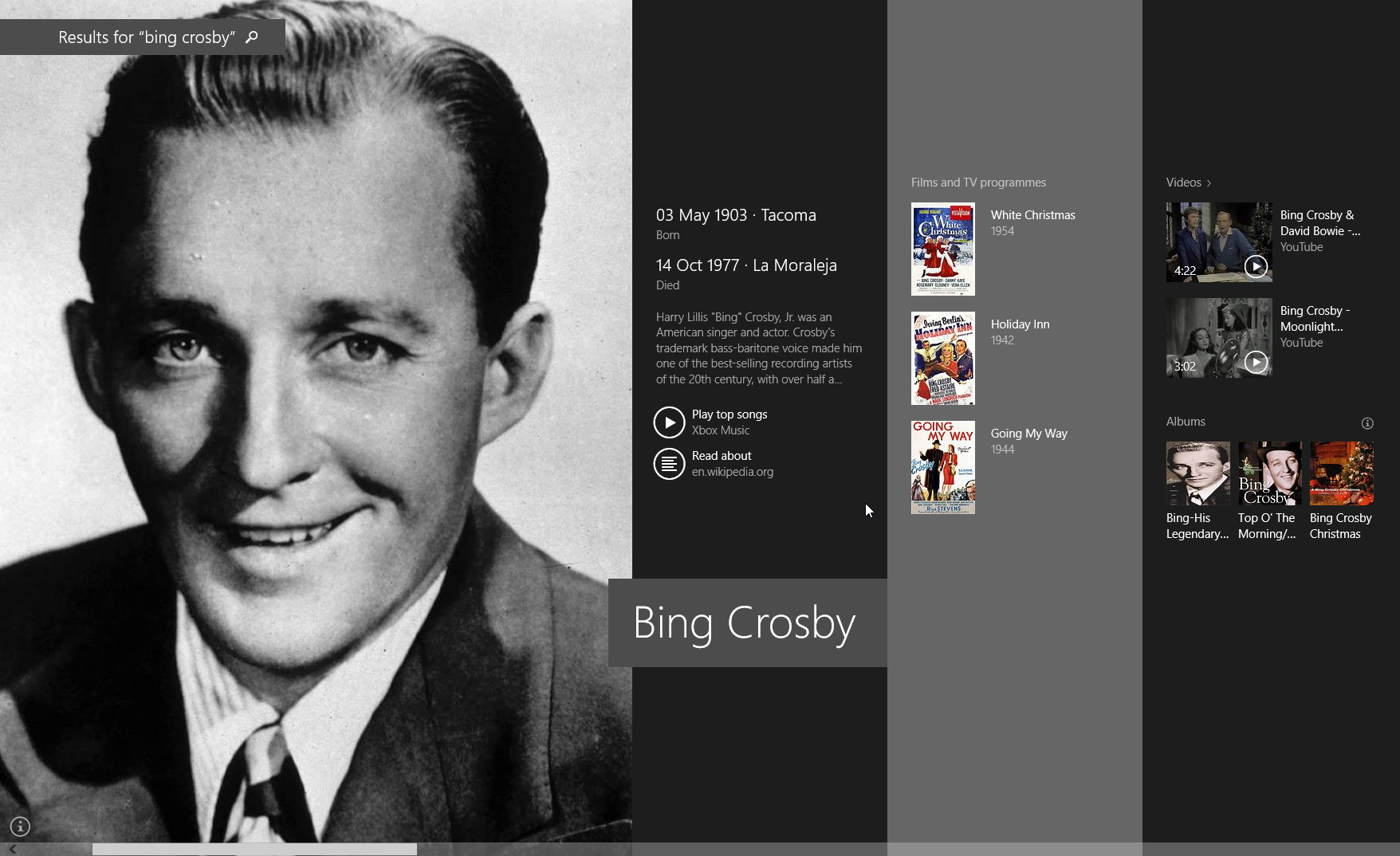
That’s just five things I like about Windows 8.1. What about you? Are there features you really appreciate, or are you thankful to be using a different OS? Leave your comments below.
Image credit: daisybee/Shutterstock
-

Is Microsoft really killing off Windows RT?
Publié: novembre 27, 2013, 7:45pm CET par Wayne Williams

There’s been a lot of talk in the press over the past few days that Microsoft is planning to kill off RT, its ARM version of Windows. Speculation about the future of the tablet OS has been rife for ages. Five months ago I declared, "Stick a fork in it, Windows RT is done" and although the OS is still with us -- thanks mostly to its inclusion in Surface and Surface 2 -- its days look to remain numbered.
The cause of this latest round of death knells for RT is something Julie Larson-Green, executive vice-president of Devices and Studios at Microsoft, said at a UBS seminar in Sausalito, California, last week. When asked about RT, and whether there was a future for it, Larson-Green replied:
Windows can do anything you want it to do. You can write all the way to the metal. You can add things into your startup groups that would affect your battery life long-term. There are cool, powerful scenarios, but they come at a cost in mobility. And so Windows on ARM, or Windows RT, was our first go at creating that more closed, turnkey experience, where it doesn't have all the flexibility of Windows, but it has the power of Office and then all the new style applications. So you could give it to your kid and he's not going to load it up with a bunch of toolbars accidentally out of Internet Explorer and then come to you later and say, why am I getting all these pop-ups. It just isn't capable of doing that by design.
So the goal was to deliver two kinds of experiences into the market, the full power of your Windows PC, and the simplicity of a tablet experience that can also be productive. That was the goal. Maybe not enough ‑‑ I think we didn't explain that super-well. I think we didn't differentiate the devices well enough. They looked similar. Using them is similar. It just didn't do everything that you expected Windows to do. So there's been a lot of talk about it should have been a rebranding. We should not have called it Windows. How should we have made it more differentiated? I think over time you'll see us continue to differentiate it more.
We have the Windows Phone OS. We have Windows RT and we have full Windows. We're not going to have three. We do think there's a world where there is a more mobile operating system that doesn't have the risks to battery life, or the risks to security. But, it also comes at the cost of flexibility. So we believe in that vision and that direction and we're continuing down that path.
What the press leapt on was a single line: "We're not going to have three". That Microsoft doesn’t want to have three separate operating systems -- Windows 8/8.1, Windows Phone 8 and Windows RT -- makes sense, but it doesn’t mean Microsoft is going to "kill off" Windows RT now, or indeed at any point in the near future.
Microsoft has distanced itself from the RT name -- it dropped it from Surface 2 to "avoid customer confusion" -- but it still supports the OS, and Surface isn’t the only slate running it, there’s Nokia’s shiny new Lumia 2520 flying the flag for RT as well.
The existence of two big new devices running RT shows clearly that Microsoft still has faith in its cut-down tablet operating system.
So Where Now?
The software giant has a couple of choices, but the most likely option is to consolidate Windows RT and Windows Phone to create a single ARM OS.
Two months ago my colleague Mihaita Bamburic asked Should Windows Phone run on tablets when Windows RT is better? He pointed out that Windows Phone has a superior app ecosystem, and a simpler interface, but lacks important features found in RT, such as the ability to run Office and multitask. In the article he stated, "Obviously, the best approach would be to take all great things about Windows Phone and Windows RT and offer them in a single tablet OS".
That makes the most sense to me, and surely also to Microsoft. The company could take what’s best about the two operating systems and merge them into one. Similar to iOS on iPhone and iPad.
There’s another possibility of course, and that’s for Microsoft to focus on full Windows 8.1 tablets (like Surface Pro 2), and find ways to drive costs down. Acer and Lenovo have shown that it’s possible to offer Windows 8.1 tablets for a reasonably budget friendly price (the 8-inch Iconia W4 costs $329.99 for the 32GB variant and $379.99 for 64GB). But Julie Larson-Green stated that Microsoft still believes "there's a world where there is a more mobile operating system that doesn't have the risks to battery life, or the risks to security", which suggests the company isn't prepared to go all-in on Windows 8.1 just yet.
If all the recent news about RT not being long for this world has you questioning whether or not to buy Surface 2 or the Lumia 2520, I would say don’t let the rumors put you off. There is no doubt that Microsoft will pull the plug on RT eventually, but only when it has something good to replace it with and even then it will likely continue to support RT devices for a good 18 months or so afterwards, by which time you'll probably be in the market for a brand new device anyway.
Image credit: Gow27/Shutterstock
-

Microsoft offering 'awesome' Black Friday deals on Surface
Publié: novembre 26, 2013, 2:10pm CET par Wayne Williams
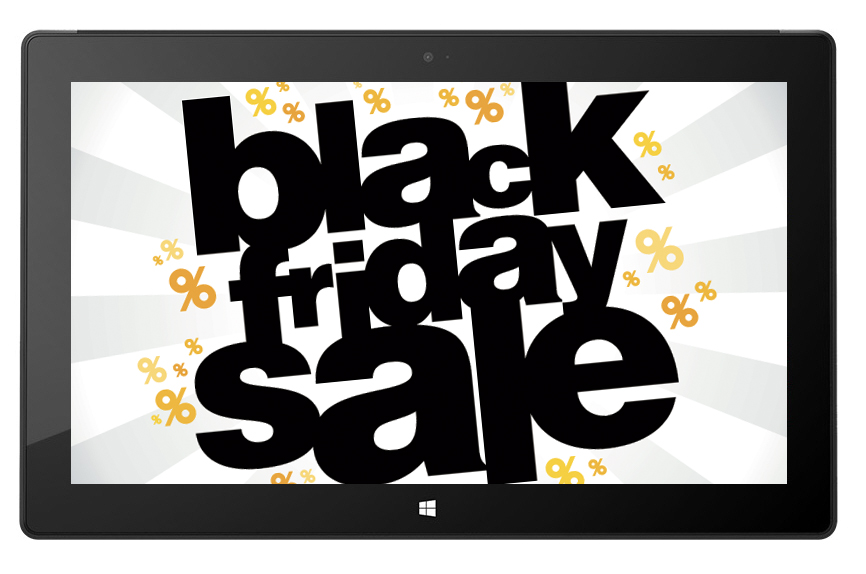
If my colleague Mark Wilson’s list of five reasons to choose Surface 2 over iPad Air has you considering purchasing one of Microsoft’s slates, you’d better get your wallet ready.
There are always bargains to be found on Black Friday (and the days surrounding it) but you can never guarantee that the tech you’ve got your eye on will be discounted. The good news for would-be Surface owners is Microsoft has confirmed it will be offering "awesome deals" on its tablet PC.
"Whether you’re shopping for a gift for a student, a busy parent, or looking for a great tablet for yourself, this is a fantastic time to pick up a Surface" the Surface Team says in a new blog post, before listing the following offers:
- Microsoft Stores: On 11/27 at 9:00pm PT you can get Surface starting at just $199! Free shipping is included. This deal will be available through 12/2 in Microsoft Stores and online.
- Best Buy: On 11/29 at 12:01am PST Surface starting at $199.
- WalMart: Surface 64GB with a black Touch Cover will be starting at $249.
- Staples: On 11/28 at 8pm PST Surface 32GB with a black Touch Cover will be available at Staples starting at just $249.
The exact details on all the offers won’t be known until the sales start -- will the price cuts just effect the older models, or will there be discounts on the new Surface 2 line? We’ll have to wait and see…
Sale sign credit: Lena Pan/Shutterstock
-

Bitcoins can now be used to buy a trip into space
Publié: novembre 25, 2013, 9:30am CET par Wayne Williams

Bitcoin is rarely out of the news these days. There have been stories about Bitcoin thefts, its use by cybercriminals, the first Bitcoin ATM, and most recently the virtual currency’s value soared to over $900 after the FBI told a US Senate committee hearing that it offers "legitimate financial services".
If you’re a bitcoin miner or collector, and are wondering what to do with your stockpiled virtual currency, you’ll soon be able to add "buy a trip into space" to the list of possibilities.
Virgin Galactic has announced that customers can use bitcoins to pay for a seat aboard its commercial space flights.
Writing on his Virgin blog, Sir Richard Branson says:
Bitcoin, the virtual currency, has really captured the imagination recently as one of the world’s most innovative businesses looking to the future. So we think it is about time Virgin Galactic customers can choose to pay with bitcoins.
One future astronaut, a female flight attendant from Hawaii, has already purchased her Virgin Galactic ticket using bitcoins, and we expect many more to follow in her footsteps. All of our future astronauts are pioneers in their own right, and this is one more way to be forward-thinking.
There are a lot of companies under the Virgin umbrella and it will be interesting to see if more of those start accepting the virtual currency as a form of payment.
-

Google celebrates 50 years of Doctor Who
Publié: novembre 22, 2013, 10:10am CET par Wayne Williams

One of the great British icons, Doctor Who, is celebrating a milestone birthday this weekend -- it’s 50 years since the eccentric Time Lord first took television viewers across space and time in his battered blue police box.
To mark the Doctor’s half a century of adventures, Google has created a special playable homepage doodle which will keep you busy for a while. To begin with it was only available on the New Zealand search page, but has since materialized (with a wheezing sound) everywhere.
To begin, click the play button on the doodle and a Dalek will zoom in from the left and steal the Google logo. Choose your Doctor from the selection of 11 (Tom Baker or David Tennant are my favorites) and you’ll find yourself in a point and click game in which you must rescue each of the letters from the clutches of the Daleks and Cybermen.
It’s great fun, and you’ll need to time your moves very carefully if you don’t want to find yourself being exterminated or deleted. In a nice touch, if your Doctor does get killed, he will regenerate so you can continue playing the game as one of his other incarnations.
To start your adventures just head to Google's home page now.
-

Apple wins $290 million from Samsung in damages following retrial
Publié: novembre 22, 2013, 8:21am CET par Wayne Williams

One year ago, Apple was awarded a whopping $1.05 billion in damages from Samsung after the South Korean company was found guilty in a US court of copying elements from the iPhone and using them in some of its own handsets. Infringed features included how the devices displayed text and icons, the bounce-back response found in iOS, and the tap-to-zoom, one-finger-to-scroll, two-to-pinch, and zoom navigation features. The award was so high because the jury found that Samsung had willfully stolen design elements from Apple.
Earlier this year the US District Judge who presided over the trial, Lucy Koh, upheld close to $640 million of the damages that Apple had been awarded, but said that calculations made by the original jury had errors in it and ordered a retrial for the remaining amount.
There was no question that Apple was going to emerge from the retrial with another chunk of money, the only uncertainty was how much. The Cupertino, Calif.-based Corporation was seeking $379.8 million, while Samsung was arguing for a less punishing $52.7 million.
In the end, Apple had to settle for $290.5 million, which combined with the upheld $640 million means Samsung has to pay its rival a grand total of $929.8 million in damages -- not too far off the original award amount. Tim Cook shouldn’t start planning how to spend the windfall just yet (not that Apple needs the money). Samsung can and will appeal both this and the earlier ruling, so things will drag on for a while yet.
Samsung spokeswoman Lauren Restuccia said "We are disappointed by today’s decision" but added “While we move forward with our post-trial motions and appeals, we will continue to innovate with groundbreaking technologies and great products that are loved by our many customers all around the world".
Apple said in a statement: "For Apple, this case has always been about more than patents and money. It has been about innovation and the hard work that goes into inventing products that people love. While it's impossible to put a price tag on those values, we are grateful to the jury for showing Samsung that copying has a cost".
Photo Credit: VIPDesignUSA/Shutterstock
-

Bing on Xbox One makes it easy to search for entertainment
Publié: novembre 19, 2013, 9:09pm CET par Wayne Williams
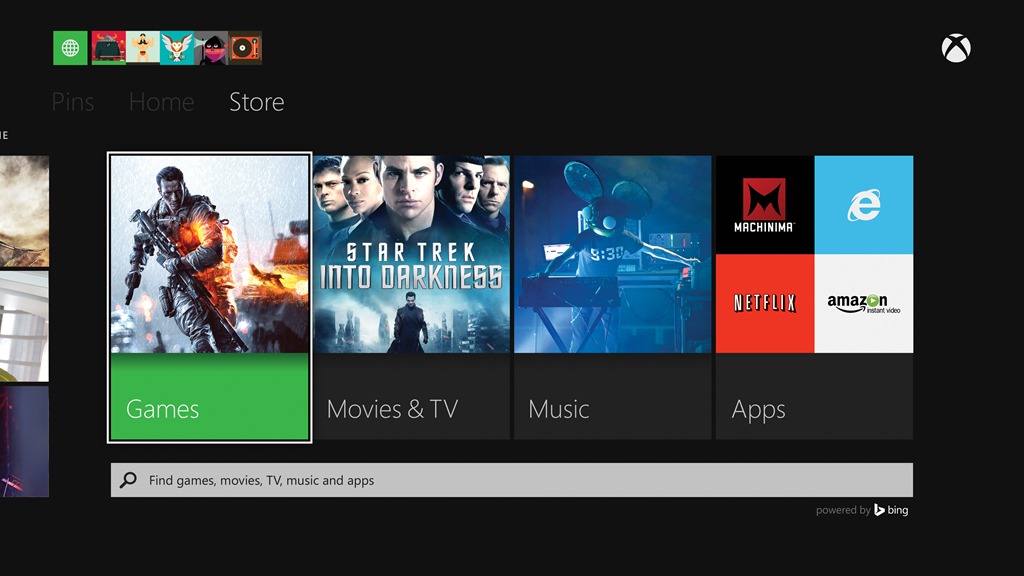
With just a few days left until the Xbox One goes on sale, Microsoft is pushing the features and benefits of its new console, focusing on everything except games.
Today, it’s the turn of Bing to step into the spotlight, with a new blog post detailing the search engine’s vital role on the system. Stefan Weitz, Senior Director, Bing explains "Whether your game, show, song or movie is in an app, on your console, or in our own Xbox Music or Xbox Video, the same instant search technology that powers Bing web search also brings your entertainment results together beautifully on your TV".
Bing on Xbox works with Kinect and uses voice search to help you find whatever type of entertainment you’re after, regardless of media type or location. Or, as Weitz claims, "You say it, Xbox One finds it".
He goes on to list some examples of things you can say to Bing:
- "I feel like watching comedy movies from the 1980’s".
- "Show me popular dubstep music".
- "I want to watch the movie Star Trek Into Darkness".
- "I want to play Forza Motorsport".
If you’ve ever found yourself repeating the same phrase over and over -- using an array of different tones and comedy voices -- in an effort to be understood by a seemingly hard of hearing speech recognition engine, you might not be relishing the idea of trying to search for entertainment in this way, but Microsoft says things have vastly improved in the past few years.
"We’ve focused on overcoming limitations of previous voice experiences. To achieve speed and accuracy improvements, we focused on an advanced approach called Deep Neural Networks (DNNs). DNN is a technology that is inspired by the functioning of neurons in the human brain. In a similar way, DNN technology can detect patterns akin to the way biological systems recognize patterns allowing us to better understand natural language".
And that’s not all. "With an arsenal of over 300,000 servers powering the back-end of Xbox One, the system is learning and adapting every day so as the vast expanse of the digital entertainment and services continues to morph at record speeds, the experience will continue to get better".
It certainly sounds promising, but it will be interesting to see if Bing can manage to understand all of the different accents and dialects in the various territories that the Xbox One will be available in.
Image credit: Aaron Amat/Shutterstock
-

Wearable technology gets its own event
Publié: novembre 18, 2013, 1:10pm CET par Wayne Williams
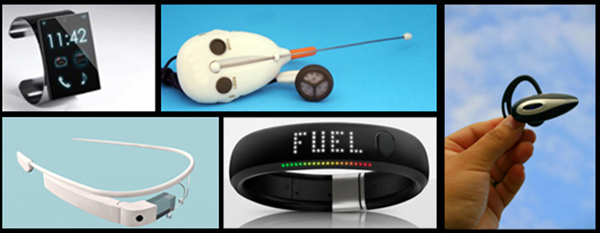
Google Glass is still being tested by a limited number of lucky users, and Apple’s rumored smart watch remains ever elusive, but wearables is clearly one of the fastest growing areas in technology, so it’s inevitable that an exhibition would be set up to showcase it.
The Wearable Technology Show will be held on the 18th and 19th March 2014, at the Olympia Conference Centre in London, and include three dedicated conference rooms, over 70 sessions on fashion, sports and fitness, health, M2M, live product demos, a developer hackfest and a business startup track.
Lisa Doerr, Event Director for The Wearable Technology Show says, "We are really excited to be launching the first show in the UK for wearable technology. We’ve already had considerable interest in the event, with pre-registrations for delegate passes already at 26 percent take up before our website went live!"
In addition the show will be hosting The Wearables -- the first dedicated awards for wearable technology in the UK.
Full details of the event, plus the list of confirmed speakers, can be found on The Wearable Technology Show website.
-

Crack out the champagne -- Raspberry Pi sales hit the two million mark
Publié: novembre 18, 2013, 9:32am CET par Wayne Williams
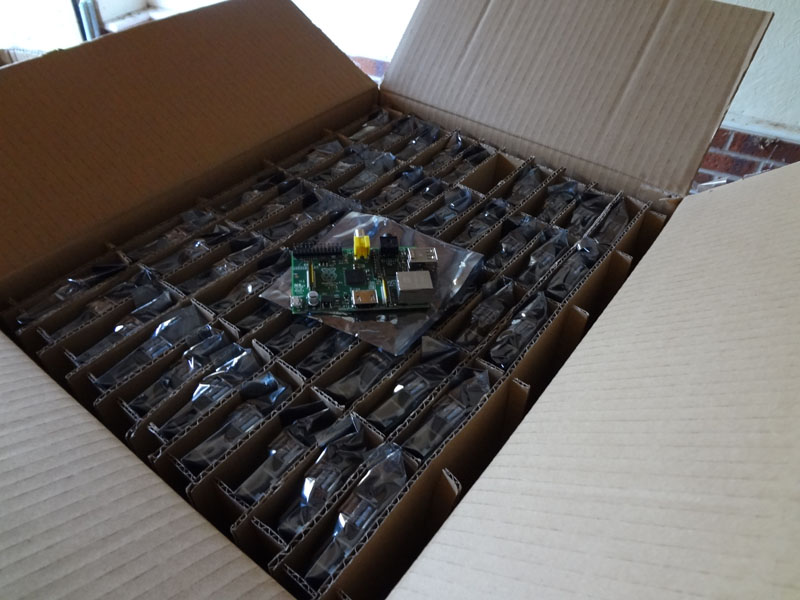
The Raspberry Pi has been at the top of my ten year old nephew's Christmas list for months now, and every time he comes to visit he asks me to power up the Model B I bought back in March, and of course I’m more than happy to do so -- any excuse.
The super-affordable uncased ARM GNU/Linux computer has been enjoying huge success since it launched in 2012, selling a million units in its first year (see the Q&A we ran with the Raspberry Pi Foundation’s Liz Upton following that milestone) and we reported sales had hit 1.75 million a little over a month ago, so it’s impressive to hear that the British-made board has just smashed through the two million mark.
Based on the sales of the first year, the Raspberry Pi Foundation had expected to hit the second million around January 2014 -- or later -- so was pleasantly surprised (to say the least) to discover the 2,000,000th Raspberry Pi was actually sold in the last week of October.
Eben Upton was inspired to create the Raspberry Pi after noticing a decline in the number of children learning to code. He wanted to create a cheap computer designed to be programmed, much like the BBC Micro -- his childhood PC. Plenty of people told Eben there’s was no market for it, but he went ahead anyway and proved the doubters wrong. The BBC Micro, which was the UK school computer back in the 1980s, only sold 1.5 million units in total, so that makes the Raspberry Pi’s achievements all the more special for Eben and the team.
Sure, the PlayStation 4 might have sold a million units in a single day, but the Raspberry Pi’s colossal sales figures are much more impressive to me, and at the current sales rate I’m sure it won’t be long before we’re reporting the news that the credit-card sized computer has surpassed the three million mark.
-

Get ready to upgrade -- DDR4 memory is on its way
Publié: novembre 15, 2013, 8:49pm CET par Wayne Williams
I recently upgraded my already fast PC, adding a large Kingston SSD, Intel Core i7 Processor, and new motherboard, and additionally boosted the amount of DDR3 RAM to 32GB. Unfortunately, my new super-speedy system could be out of date as soon as next month -- well the memory and motherboard elements of it at least.
Memory specialist Crucial has DDR4 listed on its website, along with a nifty infographic (embedded below) to tell you more about the next generation memory. According the information on the site, the faster RAM is coming out late in 2013, which means -- as we're running out of months -- it should be available some time in December.
Of course DDR4 has a different architecture from DDR3, so if you want to upgrade you’ll need a new motherboard too. Why should you consider DDR4? Well as Crucial explains on the website:
Crucial DDR4 memory technology represents the future of computing. Moving beyond the outgrown limitations of DDR3 module architecture, Crucial DDR4 memory is engineered to pack more performance into your system and has the capability to double the available density per module. Crucial DDR4 modules will use up to 20 percent less voltage than previous technology, and will enable mainstream data rates that are at least twice as fast as DDR3 memory. With DDR4 memory in your system, get ready to process data twice as fast, load applications faster, experience quick snap responsiveness and increased ability to multitask. If you thought the tablets, ultrabooks, and desktops of today already seem fast -- get ready to be blown away. The technology that enables electronics is about to get better and faster than ever before.
Although I won’t be upgrading my PC again this year, there’s every chance I’ll be going down the DDR4 route at some point next year. What about you?
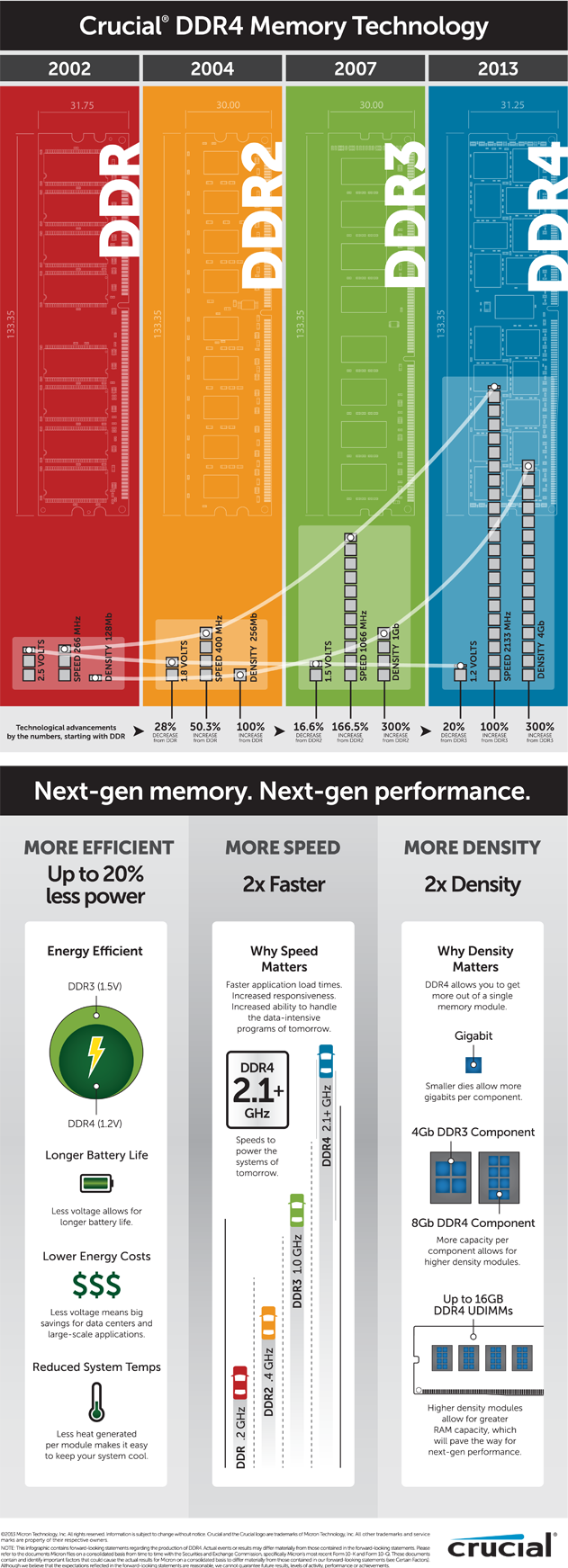
-

Microsoft invites tech enthusiasts and IT professionals to 'geek out with Surface'
Publié: novembre 15, 2013, 7:18pm CET par Wayne Williams
 Yesterday I wrote a story in which I said Surface vs iPad shows how little Microsoft and Apple have really changed. The catalyst was a blog post in which Microsoft went into technical details on the improvements it’s made to the newest iteration of Surface. Something I said Apple would never do.
Yesterday I wrote a story in which I said Surface vs iPad shows how little Microsoft and Apple have really changed. The catalyst was a blog post in which Microsoft went into technical details on the improvements it’s made to the newest iteration of Surface. Something I said Apple would never do.Today, Microsoft again shows how it’s targeting more technical users with a new blog post titled Geek out with Surface and win! The opening paragraph sums up, for me, the sort of people who the new Surface is now being primarily aimed at.
The possibilities with Surface really are endless. Whether you’re a self-identified tech enthusiast or an IT Professional charged with making sure that devices meet the needs of a demanding workforce, you’ll find that the potential to personalize, to configure, and to integrate Surface into the way you work exceeds that of any other tablet on the market. We’re thrilled to see each person’s story and get a glimpse of how powerful of a machine Surface really is for them.
"Self-identified tech enthusiasts" and "IT professionals" is a good demographic, and definitely the right one for Microsoft to be pursuing. It’s important for the tech giant to differentiate Surface from other tablets, and targeting its product at people who might actually choose it over an iPad or Nexus 10 is a smart move.
The purpose of today’s blog post is to show off what Surface owners are doing with their slates. One guy built a work station of his dreams using Surface Pro, while another reviewed Surface from a developer’s perspective.
"We know that what we’ve seen is just a small sample of what’s going on, and we’re eager to hear more about how our tech savvy customers are using Surface!" says Microsoft, before inviting people to tweet their "unique Surface scenario" using the #geekoutsurface hash tag. To encourage participation Microsoft is offering four Surface prize packs. The promotion runs from November 18-20.
Will you be "geeking out" with Surface?
Photo Credit: Creativa/Shutterstock
-

Microsoft announces Facebook Login support for Windows 8.1 and Windows Phone 8 apps
Publié: novembre 15, 2013, 3:12pm CET par Wayne Williams
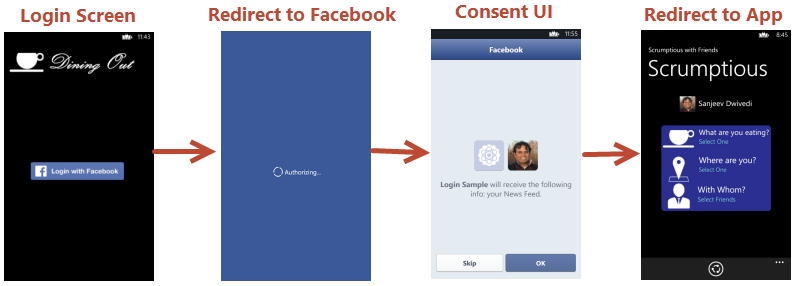
It took Microsoft a while to persuade Facebook to produce an official app for Windows 8, but having finally got the social network onboard, the software giant is looking to tighten the ties further still.
The newly announced Facebook Login APIs on Windows 8/8.1 and Windows Phone 8 will allow developers to create apps that can access a user’s Facebook profile, and make it possible to share content, and post comments in-app, and also find friends to play games with. Make no mistake, with more than one billion people using Facebook to connect and share, this is a hugely important development for Microsoft.
"Today, as part of our ongoing partnership with Facebook to support rich development scenarios, we are very pleased to announce Facebook Login APIs on Windows 8/8.1 and Windows Phone 8," says Steve Guggenheimer, Corporate Vice President of Developer Platform & Evangelism at Microsoft. "Facebook Login for Windows 8 is ready to use in production applications, and for Windows Phone 8, Facebook Login is being launched today as a beta. We expect the beta period to last 60 days or less, and encourage developers to try it out and give us feedback".
According to Guggenheimer, Facebook Login "aligns with Microsoft’s ongoing strategy and commitment to make it easier for developers to build rich, connected apps that target both Windows and Windows Phone". Facebook Login will enable consumers to:
- Login to an app with a single click or tap, re-using the Facebook credentials stored on the device.
- Share high scores and other app events to Facebook.
- Engage in social interactions like playing games against friends or finding new opponents.
- Easily access and share photos within the context of an app.
Microsoft says a number of companies are already working on integrating Facebook Login into their apps, including Adobe (in Adobe Revel and Adobe Photoshop Express on Windows 8), Foursquare, and iHeartRadio.
Facebook Login is designed for use in apps, and not to replace Microsoft’s current identity system.
You can read the full announcement here.
-

Surface vs iPad shows how little Microsoft and Apple have really changed
Publié: novembre 14, 2013, 4:46pm CET par Wayne Williams
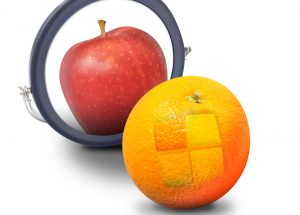 I own an iPad, and despite not rushing to buy a Surface, I actually quite like Microsoft's slate. A couple of days a week I work on my iPad (mostly remote accessing my PC via Parallels Access) and it's not a great experience. I know I'd get a lot more done if I was using a Surface Pro 2 instead, but Apple's tablet is far better in other areas, so for me it wins on balance.
I own an iPad, and despite not rushing to buy a Surface, I actually quite like Microsoft's slate. A couple of days a week I work on my iPad (mostly remote accessing my PC via Parallels Access) and it's not a great experience. I know I'd get a lot more done if I was using a Surface Pro 2 instead, but Apple's tablet is far better in other areas, so for me it wins on balance.Yesterday, on the Surface blog there was an article headed "What's new in Surface Pro 2". It was a detailed look at what Microsoft has done to improve the latest generation of its slate and I found it fascinating. Partly because it was an interesting read, but also because it was the sort of thing Apple would never do.
In the post, the Surface team goes into detail regarding the changes that were made to improve the new tablet. Here are some examples:
- We redesigned the motherboard's power delivery circuitry. We're using more efficient high-power switching voltage regulators with dual-mode low power leakage characteristics.
- We worked with Intel to architect new Turbo control modes, so that the Intel Core i5 processor delivers higher performance at lower touch temperatures.
- We improved the overall system efficiency when Surface Pro 2 drops to the Active Idle state, in between short Turbo bursts.
- We worked with solid-state drive (SSD) vendors to optimize their embedded file system software for improved Active Idle power consumption.
- We optimized and fine-tuned the drivers for optimal battery life, including the Wi-Fi and graphics drivers.
The blog post also goes into other areas where the new device has been improved, but "we're using more efficient high-power switching voltage regulators with dual-mode low power leakage characteristics" was the line that made me smile.
If Apple wrote a blog post headed "What's new in iPad Air" it would probably go something like this:
- We made it faster
- We made it thinner
- We gave it a more efficient 64-bit chip for improved performance and battery life
I'm exaggerating of course. The iPad Air page on the Apple site goes into more detail than that, but not a lot.
This isn't a dig at Microsoft for providing such technical detail, or a pop at Apple for doing the opposite, it's just shows, for me, the difference between the two companies, and at the same time the difference between the tablets and the audiences they're aimed at.
Both companies have evolved over the years, they've introduced new technology, and shaped our digital lives, but have they really changed all that much? Microsoft remains the geek, and Apple is still the cool kid as both were portrayed in Apple's famous Mac vs PC ads.
I re-watched a bunch of those commercials the other day, and was struck by how true they remain today.
In one ad Apple is talking about doing fun stuff, like music and movies, while the PC's idea of fun stuff is timesheets and spreadsheets. When Surface first came out Microsoft tried to sell it with dancers and clickable covers -- a more Apple approach -- and now it's back to pushing Office's inclusion on its tablet range, as well as Surface's ability to multi-task.
When computers ruled the world Apple tried unsuccessfully to catchup with Microsoft. Now in the so-called post-PC era Microsoft is trying to catchup with Apple in the realms of smartphones and tablets, so far equally unsuccessfully.
The two companies may operate in the same world, and offer similar products, but they couldn't be more different and I hope, for consumers' sake, that remains the case for a very long time to come.
Photo Credit: Angela Waye/Shutterstock
-

Samsung now selling over two and a half times as many smartphones as Apple
Publié: novembre 14, 2013, 1:00pm CET par Wayne Williams
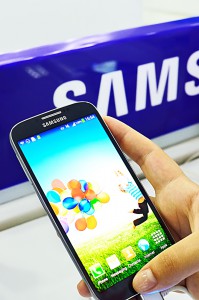 Two days ago IDC released its latest Worldwide Mobile Phone Tracker report, showing growth for both Android and Windows Phone and drops for iOS and BlackBerry.
Two days ago IDC released its latest Worldwide Mobile Phone Tracker report, showing growth for both Android and Windows Phone and drops for iOS and BlackBerry.Today Gartner provides details on worldwide mobile phone sales to end users, with the big news being that smartphones accounted for 55 percent of all mobile phone sales in the third quarter of 2013.
Worldwide mobile phone sales to end users totaled 455.6 million units in the quarter, a 5.7 percent increase from the same period last year, with 250.2 million of those devices being smartphones -- up a whopping 45.8 percent from the third quarter of 2012. The biggest growth in both smartphone and feature phones took place in Asia/Pacific.
"Sales of feature phones continued to decline and the decrease was more pronounced in markets where the average selling price (ASP) for feature phones was much closer to the ASP affordable smartphones", says Anshul Gupta, principal research analyst at Gartner. "In markets such as China and Latin America, demand for feature phones fell significantly as users rushed to replace their old models with smartphones".
Worldwide Smartphone Sales to End Users by Vendor in 3Q13 (Thousands of Units)
Company 3Q13
Units
3Q13 Market Share (%)
3Q12
Units
3Q12 Market Share (%)
Samsung 80,356.8
32.1
55,054.2
32.1
Apple 30,330.0
12.1
24,620.3
14.3
Lenovo 12,882.0
5.1
6,981.0
4.1
LG Electronics 12,055.4
4.8
6,986.1
4.1
Huawei 11665.7
4.7
7,804.3
4.5
Others 102941.8
41.1
70206.8
40.9
Total 250,231.7
100.0
171,652.7
100.0
Source: Gartner (November 2013)
Samsung remains comfortably at the head of the pack with a 32.1 percent share of the smartphone market. It saw zero growth compared with this time last year, but did sell significantly more devices and its lead over second place grew as Apple’s market share dropped from 14.3 percent in 3Q12 to 12.1 percent in 3Q13. Apple shipped its new phones late in the quarter, which would have had an impact, and Gartner feels the price difference between the iPhone 5c and 5s is not enough in mature markets, and the 5c is priced too highly for emerging markets.
Lenovo’s smartphone sales increased by 84.5 percent year on year, catapulting it into third place on the league table with a 5.1 percent share. It’s in 7th place in the global mobile phone market.
Nokia is bundled into the "others" category in the smartphone sales table, but an expanded line up of Lumia phones lifted the Finnish firm into 8th place. It remains the second largest supplier of mobile phones, despite dropping 5.3 percent year on year.
Gartner’s breakdown of the operating system market sees the same level of growth for Android and Windows Phone, and the same drops for iOS and BlackBerry as reported by IDC, albeit with some slight variations in the figures.
Worldwide Smartphone Sales to End Users by Operating System in 3Q13 (Thousands of Units)
Operating System 3Q13
Units
3Q13 Market Share (%)
3Q12
Units
3Q12 Market Share (%)
Android 205,022.7
81.9
124,552.3
72.6
iOS 30,330.0
12.1
24,620.3
14.3
Microsoft 8,912.3
3.6
3,993.6
2.3
BlackBerry 4,400.7
1.8
8,946.8
5.2
Bada 633.3
0.3
4,454.7
2.6
Symbian 457.5
0.2
4,401.3
2.6
Others 475.2
0.2
683.7
0.4
Total 250,231.7
100.0
171,652.7
100.0
Source: Gartner (November 2013)
Photo Credit: Tanjala Gica/Shutterstock
-

ComputerSupport.com partners with Citrix for next generation of cloud hosting
Publié: novembre 12, 2013, 9:08pm CET par Wayne Williams

ComputerSupport.com has unveiled its next generation cloud hosting platform ITAnyWhere Cloud. The product is based around the latest Microsoft and Citrix software, and runs completely in the AWS cloud, utilizing multi-region EC2, S3, RDS and other services.
The new version of the cloud service offers small businesses the ability to host all of their productivity applications -- web or Windows-based -- in the cloud, and access them from any device, any time. The solution will help medical and financial organizations achieve instant compliance with HIPAA, FINRA and other US regulations. The goal with this version is to improve how quickly the applications are delivered, add the ability for users self-service, and enable better mobile access.
"ComputerSupport.com is providing highly differentiated hosted virtual desktop services" says Ken Oestreich, senior director of product marketing for Citrix. "By leveraging Citrix networking, application and mobility solutions, ITAnyWhere Cloud gives small and medium businesses flexible IT services that enable mobile work styles for their users".
The continuing strong adoption of tablet devices is causing many software vendors to take a mobile-friendly approach to their new product launches. The latest release of Citrix XenApp is combined with XenDesktop, and allows for "mobilization" of any Windows application to make it touch-enabled and able to run better on mobile devices.
ITAnyWhere Cloud competes with other hosted cloud services like External IT. The differences between the two are the compliance features, and the ability for ITAnyWhere Cloud customers to get on-site support as a part of their plan, anywhere in the United States.
Photo Credit: Oleksiy Mark/Shutterstock
-

Microsoft shows off SkyDrive on the Xbox One
Publié: novembre 11, 2013, 8:45pm CET par Wayne Williams
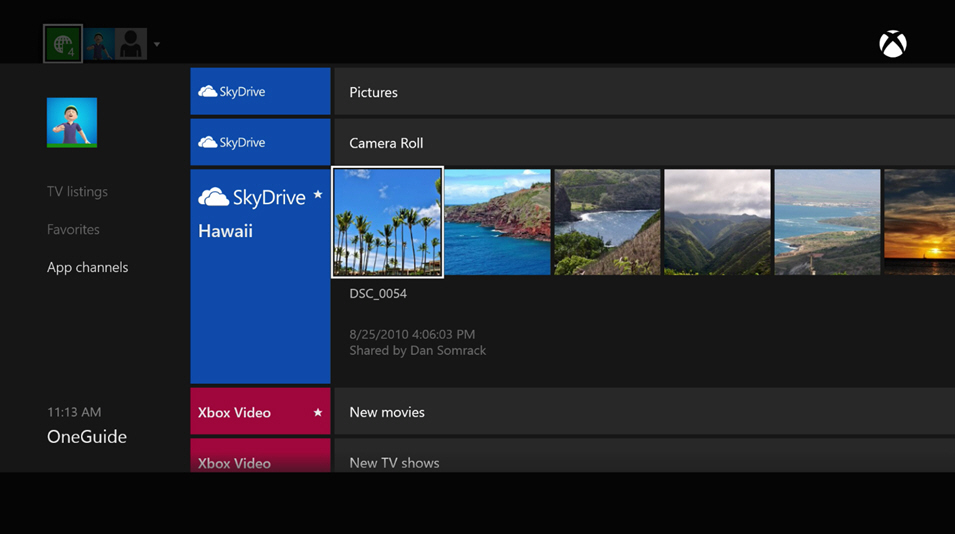
There’s not long to go now until Microsoft’s next generation console is released, and the software giant is continuing to push the many non-gaming things you’ll be able to do with it. The latest update covers SkyDrive, with a new video showing how the cloud storage integration works.
As the description accompanying the video says, "SkyDrive on Xbox One provides a seamless way to enjoy your photos and videos, or those shared with you, on the big screen. The app also takes advantage of exclusive Xbox One features: You can open photo albums from channels in the OneGuide, play music alongside your slide show with Xbox Music, and control the whole app with gestures and voice, courtesy of Kinect".
Hosted by Jeff Henshaw, principal group program manager for Xbox Incubation, the video shows how easy it is to open SkyDrive and access your content. The app displays any photos and videos in your storage, or which have been shared with you, while ignoring any other types of file.
You can navigate through the photos and videos using either the Xbox One controller or your voice, and view content full screen. In the new video, Henshaw shows how easy it is to find and access media shared by your friends just by speaking a few commands. He also explains how you can create photo channels in OneGuide.
The Xbox One goes on sale on 22 November, unless you’re one of the 150 or so people that Target accidentally shipped the console to prematurely over the weekend…
-

If you were CEO of Microsoft, what would you change?
Publié: novembre 8, 2013, 8:59pm CET par Wayne Williams
 Microsoft is actively looking for a new CEO to replace Steve Ballmer, and one of the potential candidates is Stephen Elop. In an interesting story published earlier today, Bloomberg, citing several unnamed sources, claims that the former boss of Nokia would introduce sweeping changes to Microsoft should he get picked for the top job.
Microsoft is actively looking for a new CEO to replace Steve Ballmer, and one of the potential candidates is Stephen Elop. In an interesting story published earlier today, Bloomberg, citing several unnamed sources, claims that the former boss of Nokia would introduce sweeping changes to Microsoft should he get picked for the top job.Just what sort of changes? Bloomberg says Elop would release Microsoft Office on the iPad and Android tablets, consider killing off Bing and even potentially offload the Xbox division, in an effort to give the software giant more focus.
Making Office available on competing devices and platforms would be a bold move, but one that actually makes a lot of sense. Office is still one of the brightest jewels in Microsoft’s crown, and making it as widely available as possible would ensure that remains the case. At the moment Office is being leveraged to sell Surface, and that could continue if the suite was still included for free on Microsoft hardware, but sold and/or licensed on other platforms.
Bing, while a very decent search engine, and Google’s only real rival, is a costly endeavor and one that Microsoft doesn’t need to pursue. The Xbox division is healthy, but as Bloomberg says it could be sold if not considered critical to the company’s long term strategy.
There’s no question that Microsoft has a lot of fingers in a lot of pies, but diversity is no bad thing. While rival Apple is more focused, Google has a similarly varied portfolio, and it’s that approach which has seen it grow from a free search engine to a billion dollar juggernaut.
There’s no way of knowing how accurate Bloomberg’s claims are, or how reliable the unnamed sources might be. Elop himself hasn’t said anything to suggest he plans to make such sweeping changes, and of course, he may well not get the job. Ford’s CEO Alan Mulally would be a better choice than Elop, in my opinion.
But imagine if neither of those candidates were picked for the role and Microsoft’s board decided instead to hire you as the new CEO. What changes would you look to make to the company?
Photo Credit: Tomas Urbelionis/Shutterstock
-

Google faces user backlash over the new YouTube comments system
Publié: novembre 8, 2013, 4:03pm CET par Wayne Williams
 When Google announced it was changing the comments system for YouTube, users should have been thrilled, after all that aspect of the site has been in need of an overhaul for a very long time. The update Google created adds "smarter" sorting, and "meaningful" conversations, allows comments to be moderated, and for the most part the change just makes things look tidier.
When Google announced it was changing the comments system for YouTube, users should have been thrilled, after all that aspect of the site has been in need of an overhaul for a very long time. The update Google created adds "smarter" sorting, and "meaningful" conversations, allows comments to be moderated, and for the most part the change just makes things look tidier.The problem with the new system is you need to have a Google+ account to post a comment, and YouTube users aren’t happy with that. An inevitable petition calling for Google to change the comment settings on YouTube back to their original form was duly launched and has received over 40,000 signatures in 24 hours.
The comments that accompany the petition sum up the frustration and anger that many YouTube users feel.
"James Gandolfini" says:
They have completely RUINED a great thing. Comments were the number one reason why I checked my YouTube account daily. Now that desire is gone.
While "Aaron Vollhoffer" believes Google has gone too far:
Stripping us of our anonymous profiles, forcing outside media and advertisements down our throats, censoring our comments and selectively giving commenters the ability to disable replies and ratings on their comments, among a host of unwarranted changes to the original, much more efficient and streamlined YouTube layout as a whole are just some of the many negative changes that are being made to YouTube. It's ethically wrong to force these changes unto an unwilling userbase as it alienates them while devaluing the quality of the site and tarnishing your credibility. This callous behavior needs to stop.
"Peter Felgenhauer" sums up the view of many YouTube users:
I shouldn't be forced to make a Google+ account to talk with my fellow users.
My colleague Joe Wilcox wrote an excellent piece yesterday on the reasons for the change and asked whether you should you trust Google with your identity. The answer is no you shouldn’t, but increasingly -- unless you create a fake Google account -- you have little choice.
While I’m not up in arms about the new system, for me the whole "comments sorted by people you care about first" perfectly describes everything I don’t want from a comment system. I liked the chaos of YouTube’s comments, made by people I didn’t know, and had no connection with aside from the most important one of all -- we’d watched the same video. YouTube and Google+ are not the same thing, despite Google’s attempt to tie them firmly together.
There are content creators on YouTube whose videos I love, and commenters I recognize and whose posts I enjoy -- but don’t want to follow on Google+ (why would I?). Similarly, there are people I follow on Google+ whose views on videos I couldn’t care less about, but now are suddenly being prioritized on YouTube because the search giant wants us to be BFF.
Here to Stay
Despite the speed at which the petition against the change is gathering signatures, it seems unlikely it will make any difference. Google has no intention of abandoning the new system, and petitions in the past pleading or demanding the search giant change its mind or listen to its users have all fallen on deaf ears.
Ultimately, Google knows it just has to ride out the unrest and in a week or so, or a month or so, the complaints will die back, and users will accept the new comment system that’s been forced upon them.
People don’t like change. Especially not on the web. Every time Facebook redesigns an element of the site, users revolt. As time goes on, however, the hated update becomes the standard version as people get used to it, and eventually they forget what it was like before. The same will happen with Google's new comment system.
Photo Credit: Damon Carter/Shutterstock
-

Microsoft shows what it's like to actually use the Xbox One
Publié: novembre 8, 2013, 2:00pm CET par Wayne Williams
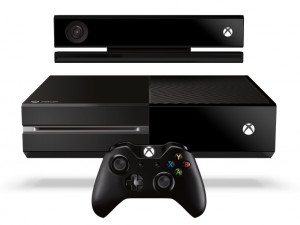 The battle between Microsoft’s Xbox One and Sony’s PlayStation 4 is set to begin later this month. At BetaNews we’re still split as to which console we think is best, leading to some spirited debates in the newsroom.
The battle between Microsoft’s Xbox One and Sony’s PlayStation 4 is set to begin later this month. At BetaNews we’re still split as to which console we think is best, leading to some spirited debates in the newsroom.To try and persuade potential buyers to choose the Xbox One, and get pre-orderers even more excited, Microsoft has released a 12-minute video showing exactly what it’s like to use its new console, and frankly it looks amazing.
The video, which was recorded on 1 November but posted today, features Xbox CMO Yusuf Mehdi and Xbox Corporate VP Marc Whitten, and shows off Xbox One features such as instant switching, biometric sign in, Live TV, Skype, game DVR and OneGuide.
Even though I’ve owned all the previous PlayStations it’s the Xbox One that has my attention, and will likely have my money too.
Does the video excite you, or persuade you that this is the console to buy? As always leave your comments below.
-

Nokia Lumia 1520 now available for preorder from Microsoft
Publié: novembre 8, 2013, 11:38am CET par Wayne Williams
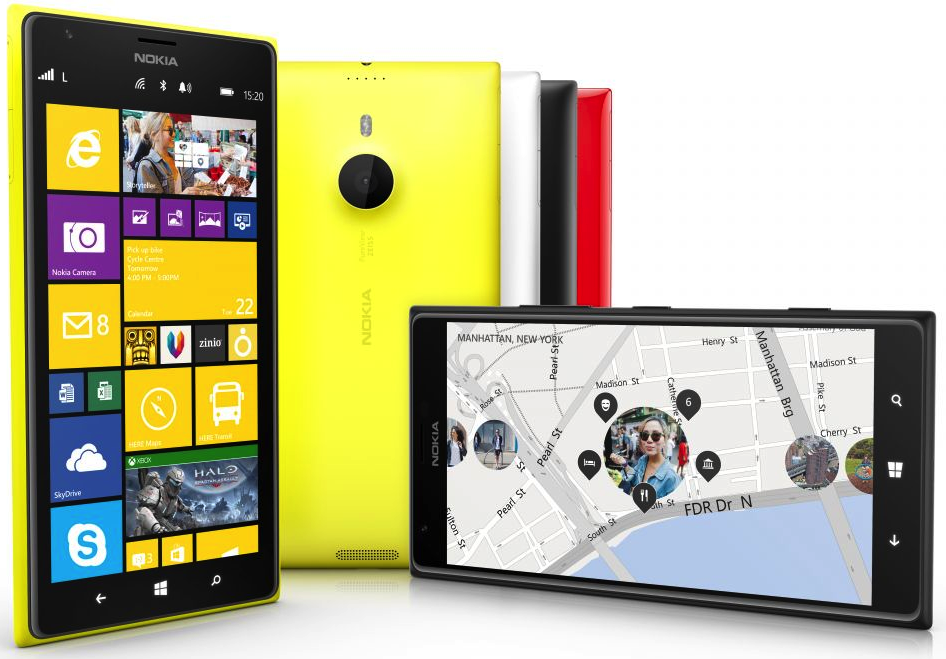
Microsoft has announced the new Nokia Lumia 1520 is available for preorder through the Microsoft Store and at all US Microsoft retail store locations from today. The device officially goes on sale on 22 November.
As an incentive, customers who preorder the product will receive a $50 Microsoft Store app card, a $20 app card provided by Nokia, a free flip cover valued at $39.99 (while stocks last), and a free download of Halo: Spartan Assault for Windows Phone. It’s a US-only offer.
"Our stores celebrate personal choice, so we’re happy to offer our customers the ability to purchase the exciting new Nokia Lumia 1520 device through Microsoft retail stores," says Kelly Soligon, senior director, Marketing and Experiences for Microsoft retail stores. "Microsoft retail store customers not only get access to this great new Windows Phone from Nokia, but they can also have a chance to customize it from top to bottom and receive a complimentary, personalized setup session with a Microsoft retail store associate".
Highlights of the Lumia 1520 include a 6-inch display with a resolution of 1080 by 1920; 2.2 GHz quad-core Qualcomm Snapdragon 800 processor; 2 GB of RAM; 3,400 mAh battery; 16 GB of internal storage; 20 MP PureView rear-facing camera; 1.2 MP wide-angle front-facing shooter and 4G LTE cellular connectivity.
The Nokia Lumia 1520 will be available for $199 for new AT&T customers or existing customers eligible for an upgrade on a two-year contract. It is available in black, red and white, with a yellow variant available later this year.
-

Where to find and access big data
Publié: novembre 8, 2013, 10:45am CET par Wayne Williams
Big data is now massively important to many organizations. The more data -- both structured and unstructured -- that firms can access and analyze, the better their insight and decision making processes can become, and that in turn can lead to better performance, improved efficiencies, and reduced risk.
Kapow Software has created an attractive new infographic that provides an overview of the different avenues and channels that big data is pulled from. These data pools include archives, docs, media, data storage, social media, business apps, the public web, and sensor data.
Each section of the graphic shows the three Vs of velocity (the rate at which data is generated and changed), variety (the number of different data sources and types) and volume (the quantity of data units per category) which are used to characterize the different aspects of big data.
The graphic also explains the terminology used, and breaks down the data sources found in each of the categories. Sensor data, for example, comes from medical devices, smart electric meters, car sensors, traffic cams, satellites, video games, cable boxes, office buildings, fridges, trucks and so on. Social media sources include Twitter, Facebook, Tumblr, YouTube and blogs.
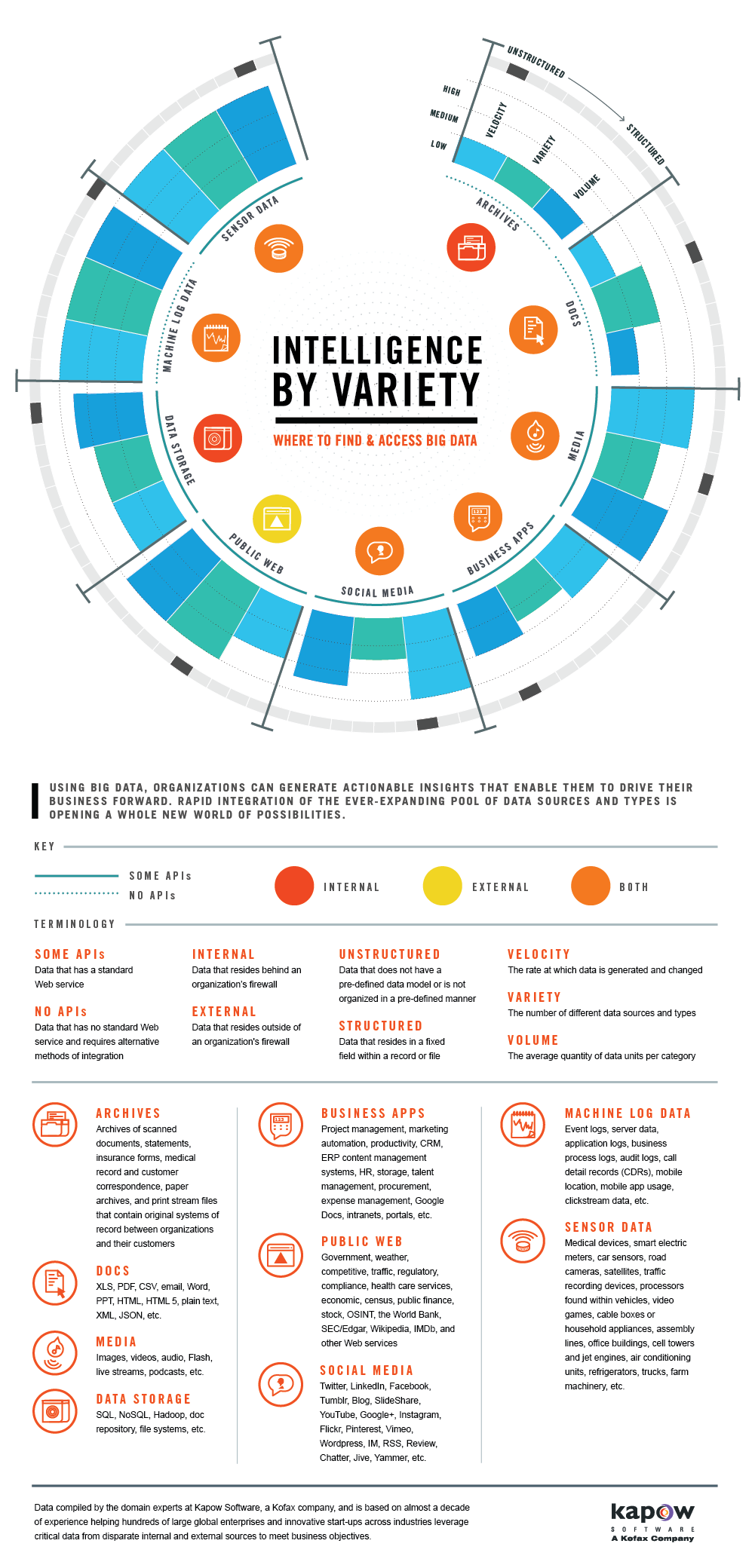
-

Internet Explorer 11 not cute enough for you? Download the official Anime version
Publié: novembre 6, 2013, 6:17pm CET par Wayne Williams
 Inori Aizawa, the official mascot for Internet Explorer (in Singapore at least) is an Anime heroine who spends her time fighting against the dark side of the web.
Inori Aizawa, the official mascot for Internet Explorer (in Singapore at least) is an Anime heroine who spends her time fighting against the dark side of the web.On her official Facebook page she describes herself as a personification of Internet Explorer, and the parallels between her life and the browser are clear. "When I was younger", she says, "I used to be a clumsy, slow and awkward girl. However, just like the story of ugly duckling, people told me that I have really matured and changed over the years. I feel confident in my abilities now, and I'm eager to show you what I can do. Why don't you get to know me a little better?"
Inori and Internet Explorer even share the same birthday -- 16 August 1995 -- which is one of those amazing coincidences...
Microsoft has released a short video showing Inori in action (likely the first of many such Anime adventures) which you can view below.
http://youtu.be/BHTUlF7NA2o
If you like what you see, are a fan of Anime, or just find the regular Internet Explorer boring, you can download a special, cuter Inori version of the browser here. You'll need to be running either Windows 7 or Windows 8.1.
At the moment the link is down (it was working a short while ago) but you can set your Internet Explorer home page (IE9 and upwards) to [internetexplorertan.com] if you want to start enjoying the Inori experience early!
It’s certainly a different way to attract people to the browser -- what’s your take on it?
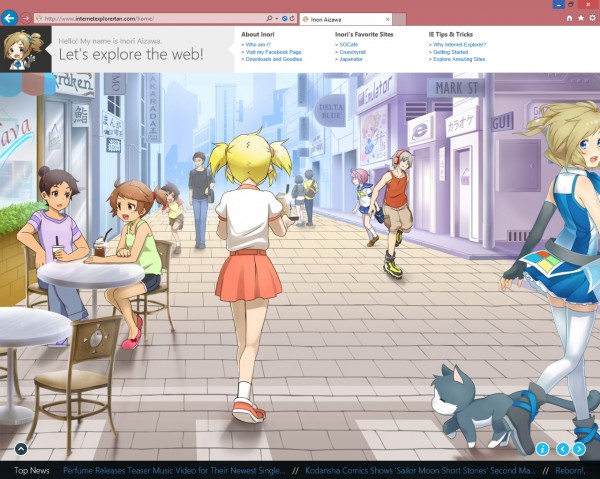
-

Activate the hidden 'Slide to shut down' option in Windows 8.1
Publié: novembre 6, 2013, 4:40pm CET par Wayne Williams
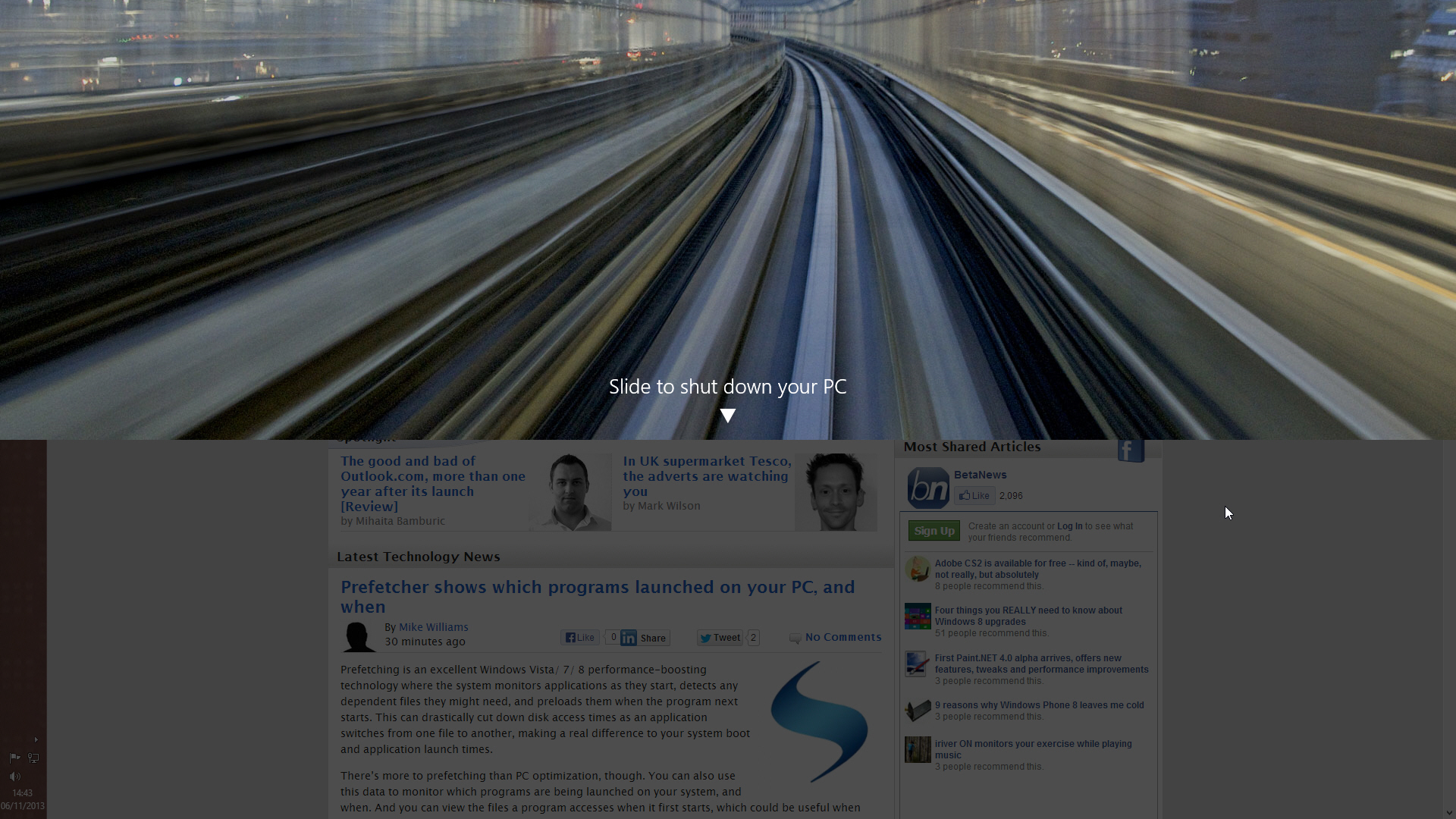
One of the (many) complaints people had about Windows 8, was how unnecessarily awkward it was to shut it down. Windows 8.1 makes that aspect of things much easier. You can still go through the Charms bar, but you can also now right-click the new Start button and shut down, or sign out there.
There is another method though, and that’s to use the "Slide to shut down your PC" option. This isn’t activated by default, but it’s easy to summon, and you can create shortcuts for it.
To try the feature, launch the Run box (Windows+R is the quickest way to do this) and type slidetoshutdown.exe. Hit OK, and a shutter-style screen will appear. Drag down on this, to shut down Windows.
Since you don’t want to be opening the run box and typing in a command every time you’re done with your computer, you can create a shortcut to it.
Browse to C:\Windows\System32, scroll down and right-click on slidetoshutdown.exe and choose the action you want. You can create a desktop shortcut or pin it to the taskbar or Start screen.
-

Windows 8.1 'Back-up Media' disc available to buy soon
Publié: novembre 5, 2013, 9:40am CET par Wayne Williams
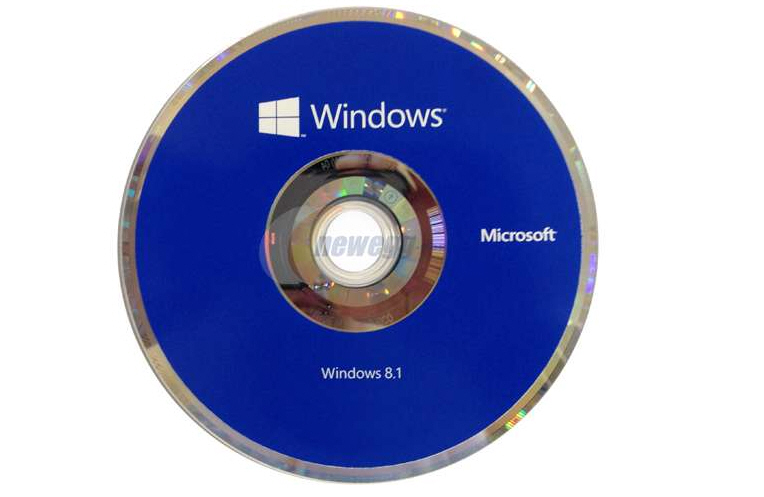
Although Microsoft made upgrading from Windows 8 to 8.1 easy and free, the process has to be done through the Microsoft Store. If you want an ISO version of the OS, and don’t have a TechNet or MSDN subscription, you need to engage in a little trickery, which is straightforward enough, but not ideal.
As someone who once bought a brand new Advent laptop with Vista on it, but without any discs I could use to reinstall or repair the OS in the event of trouble, I know how frustrating not having a physical (or digital) copy can be. Newegg is currently offering a "Windows 8.1 Back-up Media disc" for pre-order that could potentially save the day.
Exactly what the disc contains isn’t spelled out (a recovery disc/a full installable copy of the OS/both?), but you will need to have your own Windows 8.1 license key to use it. The disc doesn’t come with one, which is to be expected as the product retails for $14.99. It’s also being offered through AntaresPro for $19.98.
The Windows 8.1 Back-up Media disc is set to be released on the 15 November, so we should find out more about it before then. You can pre-order it from Newegg here.
-

Windows 8's market share declines, but factor in Windows 8.1 and it's up -- but only just
Publié: novembre 4, 2013, 12:02pm CET par Wayne Williams
NetMarketShare's monthly operating system statistics always make for interesting reading and analysis. For example, a month ago they showed Windows 7's growth was outpacing that of Windows 8. That was, naturally, just a blip, but in October -- the month that Windows 8.1 launched -- Windows 7 managed to make further market share gains.
There are other interesting things about last month's share statistics. Windows 8.1 -- which NetMarketShare has included since the Preview version launched -- is up, as you'd expect, while Windows 8 drops. Combined, the two operating systems see an overall rise, but the growth is slight.
The newly released OS nearly doubled its market share in the month, rising from 0.87 percent to 1.72 -- a fairly moderate increase considering it's a free upgrade from Windows 8, and a much better operating system. Windows 8.1's adoption is outpacing that of Windows 8 at launch, but as a free upgrade it should. The operating system's share will increase as time goes on, and people get around to upgrading. I'd expect it to jump to over 3 percent next month.
Windows 8's share declined, dropping from 8.02 percent in September (the highest it will ever be now) to 7.53 percent in October. That fall isn't surprising as users migrating to Windows 8.1 are bound to affect the numbers.
Windows 8 lost 0.49 percent, and Windows 8.1 grew by 0.85 percent, so it's fair to say most of that decline is down to users upgrading.
Those numbers also show that while Windows 8.1 upgrades are slow, it's selling reasonably well as half the share increase comes from new sales.
Combined, the two operating systems grew by 0.36 percent to 9.25 percent. It's worth pointing out that the numbers from NetMarketShare are for desktop-based computers and don't take into account Windows 8/8.1's presence on tablets.
Windows 7's share was up, but only just, rising a mere 0.03 percent from 46.39 percent in September to 46.42 percent last month. But it's still growth. Windows XP declined from 31.42 percent to 31.24 percent, a drop of 0.18 percent.
Apple's OS X Mavericks (10.9) has 0.84 percent of the desktop market, which is pretty good considering it was only made available two weeks ago as a free upgrade.

Photo credit: Igor Kovalchuk/Shutterstock
-

Runtastic aims to make exercise more fun with Story Running
Publié: novembre 1, 2013, 9:32am CET par Wayne Williams
 Running can, at times, get rather boring (especially treadmill running). I’m a huge fan of the Zombies Run app which helps keep runners like me going for longer by providing an unfolding story in-between your music tracks, and also offers numerous modes (like Radio, Race and Supply) for when you’ve listened to all of the available chapters.
Running can, at times, get rather boring (especially treadmill running). I’m a huge fan of the Zombies Run app which helps keep runners like me going for longer by providing an unfolding story in-between your music tracks, and also offers numerous modes (like Radio, Race and Supply) for when you’ve listened to all of the available chapters.A bit of variety is always welcome though, and Runtastic is muscling in on Zombies Run territory with what it’s calling Story Running.
An update to the main Runtastic Running app (available for iOS, Android and Windows Phone), it provides a choice of stories for you to download and listen to while exercising.
There are currently four stories available, in different genres – The Carrier of Truth: Beyond the Walls of Alcatraz (Adventure), Journey of Iomluath: The Tribes’ Saviour (Fantasy), Toward the Finish Line (Motivation), and The Globerunner: Rio’s Marvels Of Life (Travel). You can purchase the tracks individually for $0.99 each, or buy the story bundle for $2.99.
If you’re not sure whether it’s something you’d want to listen to, the website offers some short audio previews.
Each story lasts for around 37 minutes, so it’s not something suitable for a marathon, but if you need a little motivation to get out there now the weather is less inviting, it might just help.
-

You are dead! Papa Sangre II arrives in time to scare up Halloween [Review]
Publié: octobre 31, 2013, 12:49pm CET par Wayne Williams

I like unusual games, and the original Papa Sangre really appealed to me. If you’ve never heard of it, it’s essentially a sound-only game for iOS in which you listen for 3D audio clues as to where you are and the direction you need to be going in. The follow up, The Nightjar (featuring the voice of Benedict Cumberbatch), added more of a story to the proceedings, and now in time for Halloween, Papa Sangre returns.
I was one of the beta testers for the new game, and I’m pleased to report Papa Sangre II is a massive improvement over the original. The rebuilt binaural processing Papa Engine does an amazing job of recreating a 3D soundscape in your mind and the addition of actor Sean Bean’s vocal talents, a choice of control systems and some inspired levels -- one moment you’re escaping a burning house, the next shooting ducks in the dark -- combine to create a very rewarding experience.
In Papa Sangre II you are dead. There’s no way to sugar coat it. But by following Sean Bean’s instructions, and collecting memory fragments from dead souls, you might be able to find a way back to the World of the Living.
The improved control systems -- you can choose Gyro (point in the direction you want to go), Swipe (drag your finger on screen to change direction) or Tilt (angle the device where you want to face) -- mean you can play it anywhere. I prefer to use the Gyro mode while seated in a swivel chair in the dark (or with my eyes closed), as I find it’s so much easier to follow the sounds. With the original Papa Sangre it could be difficult sometimes to work out if a sound was in front, or behind. There’s no such confusion in the sequel -- you know exactly where the sounds are coming from (provided you have your headphones on the right way round).
You walk or run by tapping the bottom half of the screen (left, right, left, right) and interact with items or your surroundings using the hand icons at the top of the screen. It’s very intuitive and you don’t need to see the screen to use it.
The biggest complaint I had with the first game was the lack of variety in levels. That’s definitely not an accusation that can be leveled at Papa Sangre II. As well as trying to escape a burning building, or shooting incoming ducks, other challenges have you rescuing a dog from an ice field, using a Geiger counter to avoid radioactive steam blasts, making your way through a thunderstorm, and swimming under water (not all at once, thankfully).
The game is very challenging at times, and it can be frustrating repeating levels that you can’t seem to master, but that just makes it all the more rewarding when you finally make it through.
The fact the game takes place in your mind, means it’s surprisingly scary at times. Inching forward trying not to make a sound while something is growling by your shoulder really does get the blood pumping.
Obviously this is not a game for everyone, but if you fancy trying something different and giving your imagination a workout, I can definitely recommend it. Papa Sangre II is available in the Apple App Store now, priced at $3.99/£2.49.
-

Tidy up the Windows 8.1 Apps screen by removing unwanted shortcuts
Publié: octobre 30, 2013, 12:21pm CET par Wayne Williams
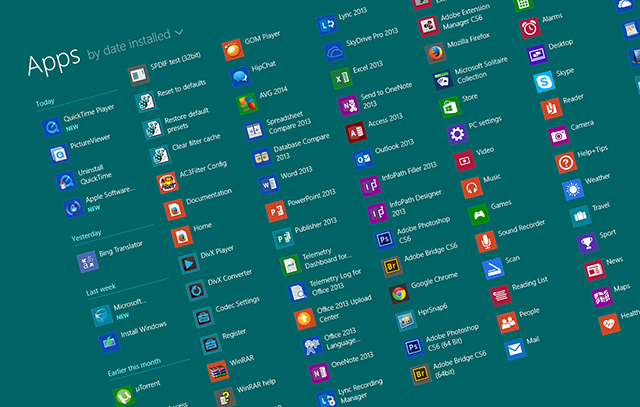
When you install an app or desktop program in Windows 8.1 it gets added to the Apps screen. From here you can add it to the Start screen by right-clicking to summon the Customize menu, and then selecting "Pin to Start". You can also "Pin to Taskbar" if you want regular quick access to it while working in the desktop.
The Apps screen, which you can set as your default view, can be ordered by Name, Date Installed, Most Used, or Category -- to make it easier to find the apps and desktop programs you want. You can also have desktop programs show up first when the Apps screen is sorted by Category. To do this, right-click the taskbar and select Properties. Click the Navigation tab and tick “List desktop apps first in the Apps view when it’s sorted by category”.
So far, so good. What you will find, however, is the Apps screen will start to get cluttered with shortcuts you have no interest in. Links to documentation or web pages, for example, readme files, licenses, options to check for updated versions and so on. If you install a lot of software, these can quickly fill up the Apps screen.
Removing unwanted shortcuts is very easy. Just right-click one and select "Open file location". File Explorer will launch with that shortcut selected. Tap delete to send it to the recycle bin. When you go back to the Apps screen the shortcut will have vanished.
Naturally, you should only remove shortcuts this way. If you want to remove an app or desktop program, right-click it and select the Uninstall option.
-

Windows 8.1's Calculator app sums up what's wrong with Microsoft's new OS
Publié: octobre 28, 2013, 2:08pm CET par Wayne Williams
 Windows 8.1 is great. But at the same time it -- and its predecessor -- is based on a slightly flawed concept. It's built on the idea of a one-size-fits-all operating system, but in order to get it to work across tablets, desktop PCs, laptops and hybrids, Microsoft has had to make various compromises. A bit like trying to make one suit fit four people with different body shapes.
Windows 8.1 is great. But at the same time it -- and its predecessor -- is based on a slightly flawed concept. It's built on the idea of a one-size-fits-all operating system, but in order to get it to work across tablets, desktop PCs, laptops and hybrids, Microsoft has had to make various compromises. A bit like trying to make one suit fit four people with different body shapes.Windows 8.1 (like Windows 8) fits best on tablets, but tweaks had to be made to ensure it runs on smaller screen sizes. Windows 8.1 works well on standard PCs, but you can almost feel Microsoft's disapproval when you're controlling the OS with a mouse and keyboard -- "But that's not how it's meant to be used!" As a desktop user there are various elements of the new OS which annoy me, but none more so than the Calculator app.
I know what you're thinking. The Calculator app, really? Let me explain. I hate it. It is, to me, the epitome of everything that's wrong with the one-size-fits-all approach of Windows 8.1. On a small Windows tablet, like the Acer Iconia W4, the calculator app works fine. It does a good job. You can use it to do all the things you'd want to do with a calculator. Add up numbers. Subtract them. Multiple them. Wonderful.
On my desktop PC with its two 24-inch screens, the Calculator app is the most useless thing ever. I launch it and it takes a while to open, and then it's there -- bloody huge -- filling my screen with buttons the size of business cards. It offers a selection of calculator types -- Standard, Scientific and Converter, and each mode looks like it's been designed to be viewed from Mars.
To calculate a sum I have to stop what I'm doing, open up this monstrosity, tap in my calculation, then close the app down. It's an exercise in time wasting.
Yes, Windows 8.1 comes with a standard calculator for the desktop -- and this is the program I actually use -- but my point is, the Calculator app serves no purpose on a PC. It doesn’t belong there. It doesn't look like it belongs there. So why is it included?
Because Microsoft is trying to make Windows 8.1 fit everywhere.
Windows 8.1 does this thing if you have a large screen. It detects it, and adds more rows to the Modern UI, so you can fit more tiles into the available space.
So why doesn't the Calculator app detect my large screen and use the space more intelligently? Why, instead of opening full screen, doesn't it just appear in a strip down the side? Why does every app in the OS have to run full screen unless manually resized? Because Windows 8.1 treats every app as if it’s being opened and used on a tablet with a -- at most -- 10-inch screen.
My point here is Windows 8.1 is a good operating system, but it could be a great one if Microsoft had written it to adapt intelligently to the different devices it's on. Instead of offering the same features to all, how about if Windows detects its environment and removes the features you don't or can't use?
I don't have any statistics on hand to back this up, but I'd imagine most people who have a non-touchscreen PC spend most of their time in the desktop, while anyone who owns a tablet running Windows 8/8.1 will use apps a lot more. So instead of requiring the user to customize the OS to how they want it, why can't the OS configure itself to the likely needs of the user?
At the very least, Microsoft could include a wizard that runs the first time you use Windows and lets you choose the features you want, and the features you don't. Instead of just letting us pick a color scheme, how about letting us choose how Windows works from the start, like choosing a desktop-friendly or tablet-friendly setup? Every time the OS detects a change to the hardware it can offer to run the wizard again.
I believe in Microsoft’s vision of having the same operating system running on a phone, tablet, and PC. It's a great idea. You learn how to use one device and you can use all devices. Your data and preferences are available to you everywhere, regardless of whether you're on a PC at home, or using a Surface in a coffee shop on the other side of the planet. It's a bold, brave idea, and to a degree it works.
But one-size-fits-all really means one-size-fits-all-badly, and for Windows 8.2, or Windows 9, I'd like to see the approach handled a lot more intelligently.
And yes, it's not just the Calculator app I hate. The super-sized Alarms and Sound Recorder apps are just as bloody ridiculous (maybe even more so).
Photo Credit: Dusit/Shutterstock
-

Most people still not doing enough to safeguard their personal data
Publié: octobre 25, 2013, 10:46am CEST par Wayne Williams
 I know a couple of people who have been victims of identity theft, and while they didn’t lose anything financially, there was a lot of work required afterwards to clear up the mess and put safeguards in place to ensure it didn’t happen again. What was amazing to me was that the thieves were able to do things like open store cards with information that was not only false, but incorrect (an entirely fictitious date of birth, for example).
I know a couple of people who have been victims of identity theft, and while they didn’t lose anything financially, there was a lot of work required afterwards to clear up the mess and put safeguards in place to ensure it didn’t happen again. What was amazing to me was that the thieves were able to do things like open store cards with information that was not only false, but incorrect (an entirely fictitious date of birth, for example).A new infographic from Experian looks at the dangers of identity theft both on and offline, and provides statistics that show while most of us are aware of the risks, few of us actually do enough to properly safeguard our personal information. The findings probably won’t surprise you.
The source of the infographic is an online poll from Harris Interactive conducted on behalf of Experian’s ProtectMyID and involved 2,041 Americans aged 18 and over.
Of those surveyed, 93 percent recognized that identity theft is a real and growing problem, but while 89 percent said they took steps to protect their data, the truth is many fail to take even the most basic of precautions.
Only 45 percent said they check if an online store is secure before making a purchase, for example, and 63 percent don’t use unique passwords for each account they have online. People still continue to post crucial personal data -- like date of birth and employer information -- on social networks.
43 percent of smartphone users don’t protect their devices with passwords and the same lack of basic security applies to 47 percent of tablet owners. Although Experian doesn’t list a reason for this, mobile devices are usually left unprotected for speed and convenience. Users see tapping in a PIN as an annoyance -- a barrier that delays them from getting to use their device to make a call, send a text or open an app. The introduction of fingerprint scanners will hopefully plug this security gap in time.
I’ve become a lot more security conscious in recent years, but there are still areas where I know I could do better. What about you?
Photo Credit: Elnur/Shutterstock
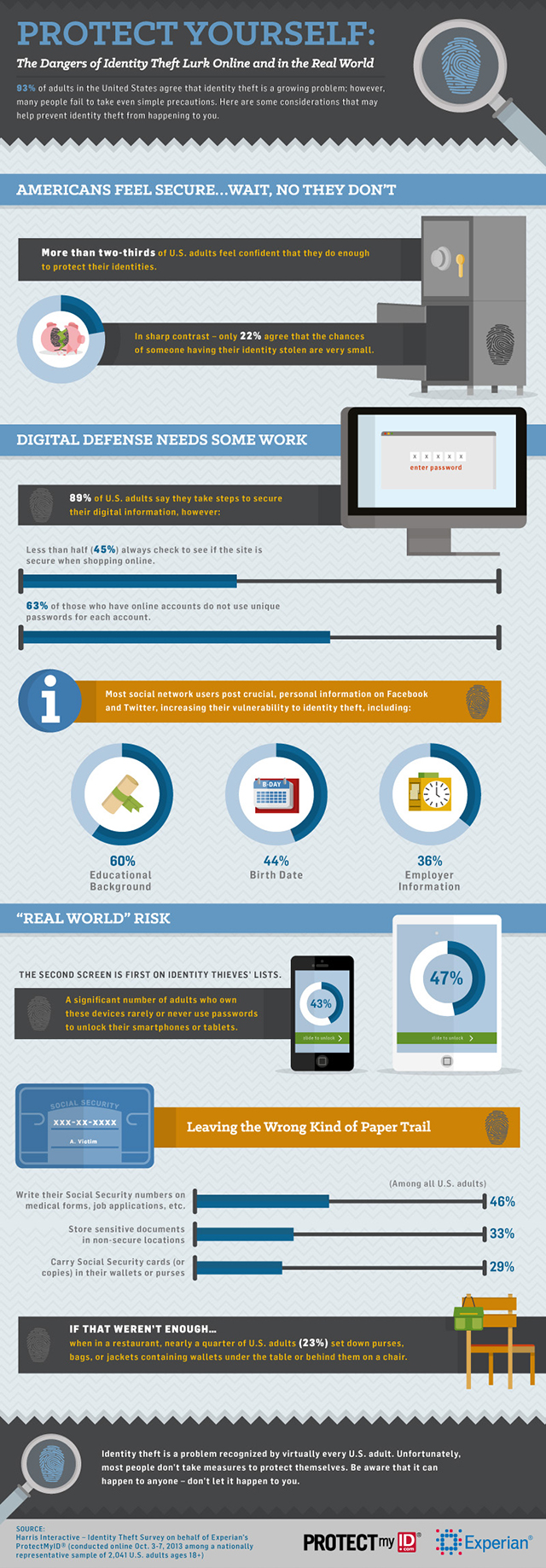
-

Microsoft targets musicians with the innovative Surface Music Kit
Publié: octobre 24, 2013, 10:19am CEST par Wayne Williams
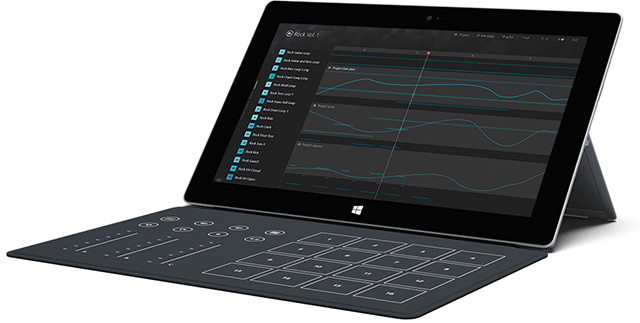
Microsoft is hoping to appeal to serious musicians and remixers with a new add-on for its tablet range. The Surface Music Kit is a backlit cover (called a Blade) that plugs into the Surface keyboard port and replicates the sort of hardware buttons typically used by a music producer or performer.
When you connect the Music Cover, it will install the companion app automatically, providing you with access to all of the building blocks of a song -- templates, drums, bass, keyboard, vocals, and so on. You can use it to create new music but it’s particularly well suited to remixes and mashups.
The custom cover, of course, is the key to controlling everything and includes pressure sensitive pads, buttons and sliders. It really is a nifty piece of kit. When my colleague Brian Fagioli first saw Blades at the Surface 2 event he called them "true innovation from Microsoft" and he’s right. This is exactly how Microsoft can differentiate its tablet from the cheaper rivals and appeal to creative professionals. In a crowded market you need something that gives you an edge, and Blades do that.
Songs you create with the music kit can be exported in MP3, WAV and WMA formats, and shared as part of the #RemixProject.
The Surface Music Kit isn’t available to buy yet (and there’s no word on how much it will cost when it is) but to get you excited, Microsoft has released a series of nine videos showing how it works and what you can do with it. The clips cover downloading songs and templates, using the song view, using the loop mode, and mute and solo buttons, matching pitch and tempo with imported sound, adding effects, and exporting your remix.
I’ve embedded the full selection below for your viewing (and listening) pleasure. The kit is compatible with Surface 2, Surface Pro, and Surface Pro 2. Let me know what you think about it in the comments below.
-

Apple inflicts major Surface damage on Microsoft -- probably doesn't even care
Publié: octobre 23, 2013, 2:20pm CEST par Wayne Williams
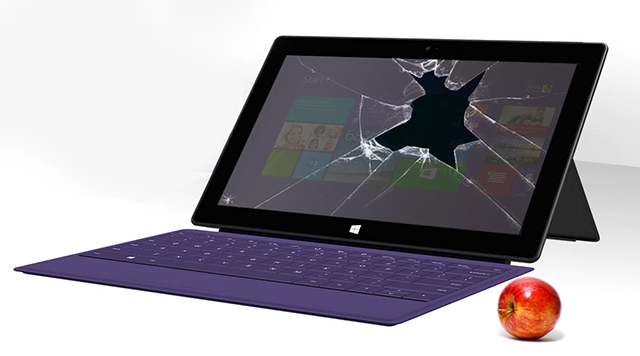
Yesterday was unquestionably the day of the tablet. Nokia unveiled the Lumia 2520, its first Windows RT 8.1 slate, Apple announced the iPad Air and iPad mini with Retina display, and Microsoft’s Surface 2 and Surface Pro 2 went on sale.
It was unfortunate timing for Microsoft. On a day when Steve Ballmer and co. would have hoped people would be talking about Surface, they were salivating over Apple instead. The fruit logo company inflicted more damage on Microsoft than just drawing focus for a day however.
Microsoft's biggest problem is getting people to care about its new Surface tablets. Surface 2 and Surface Pro 2 are the successors to products that sold poorly. Yes, both upgraded devices are much better, and yes Windows 8.1 is massively improved, but the new tablets are premium priced and the average consumer isn't likely to really understand the benefits that Surface offers over the iPad, or numerous much cheaper Android tablets.
If you use and like Windows 8.1 on your PC (and in the grand scheme of things, not many people do at the moment; the OS only came out a week ago after all), and you want to have the same experience on your tablet, then Surface is an obvious choice. Provided you want a tablet to do work on. Office is a major selling point for Microsoft, as is the existence of attachable keyboard covers. For work, Surface is a great product -- like a laptop, but much more versatile.
The trouble is, according to recent research from Gartner, users spend at least half their tablet time on games, movies and listening to music, a quarter of their time on email and social networking, and the rest on browsing the web and creating content like videos. Tablets, away from the work environment, are mostly used for fun, and Surface, in all its forms, isn't really billed as a fun product. The original devices didn't even look all that fun when they were surrounded by dancers. The Microsoft Store has lots of games and decent apps now, but it can't come close to competing with the depth of choice to be found in Apple's App Store.
At yesterday's event Apple introduced two stunning new tablets. The iPad Air is so light it can be used comfortably one handed, but yet is more powerful than its predecessor. The iPad mini has a much better display, but the same powerful guts as the iPad Air. Both look amazing. And if you put them next to a second generation Surface, Microsoft’s new tablet looks rather dated in comparison.
And what do the names say about the tablets? While Surface sounds solid and grounded, Air is lightweight and flying high.
There's another problem for Surface -- the lack of clear differentiation between models. The Surface line consists of three devices: Surface (formally known as Surface RT), Surface 2 and Surface Pro 2. The lineup closely mimics Apple's iPad selection: iPad 2, iPad mini with Retina display and iPad Air, but while the differences between the iPads are very clear (older and cheaper, smaller, flagship), the differences between Surface models is less obvious to consumers (cheaper and older, er.. and errr…).
Turn off the screens on all the iPads, and get someone to place the correct identifying label on each them, and they'll be able to do it with ease, even if they've never seen or used an iPad in their lives. Repeat the task with the Surface models and I can guarantee the success rate will be far, far lower.
The Fatal Flaw
Matt Rosoff, Editorial Director of the IDG property CITEworld, was an analyst for ten years at Directions on Microsoft, and doesn't see the Redmond tech giant winning any battles against Apple anytime soon. In fact his vision for Surface 2 is one of doom and gloom. As he told me yesterday, "The original Surface did not fail because of bad hardware. It failed because of an unclear use case and a lack of apps. So in order for the Surface 2 to succeed against the iPad, it must be significantly better or cheaper. It's not. The fatal flaw of Surface RT and Surface 2 is that they run Windows RT, which means they can't run any traditional Windows programs. Microsoft's sales pitch for Surface is that it comes with Office, but people who really need Office tend to work on a laptop anyway, and getting a full Windows 8.1 laptop or Surface Pro 2 offers the flexibility of running traditional Windows software".
So in other words, Matt feels two of the three products in the Surface line have limited appeal to consumers, and as much as I like Microsoft's slates I have to agree.
More Bad News
Amid all the new products, Apple yesterday announced it was bundling iWork (and iLife) for free on the new iPad. So now the world's bestselling tablet comes with a productivity suite of its own. "It's a smart move on Apple's part", Rosoff told me. "It undercuts one of the main differentiators of Surface 2 -- the bundled Office apps".
Yes, iWork might not be Office, but it has a pretty decent set of applications that have been specially retooled for that operating system and will likely be fine for most people's needs. Office hasn't been updated to properly suit a tablet environment yet and, when it is, Steve Ballmer himself has said a version of Office will be coming to the iPad eventually -- inevitably -- anyway.
While the inclusion of iWork on the new devices was likely a response to Office on Surface, it's not Microsoft's tablets Apple cares about. "It's important that Apple keep refreshing the product line, but that's more to keep the iPad relevant against the influx of Android tablets", Rosoff says.
Does he think the iPad Air will have an impact on the new Surface sales? "No. I think the Surface 2 would have struggled against the iPad even if Apple had not refreshed the product line. The Surface 2 has solid hardware, but the app ecosystem is nowhere close to Apple's".
-

Apple announces updated iWork and iLife apps for free -- although there is a catch
Publié: octobre 22, 2013, 9:24pm CEST par Wayne Williams

Despite being billed in the press as an iPad event, Apple announced much more than just the iPad Air and new iPad mini today. As well as improved hardware it revealed its OS update Mavericks would be free, and the giveaways didn’t stop there.
Its iWork productivity apps -- Pages, Numbers and Keynote -- and its iLife creativity apps -- iPhoto, iMovie and GarageBand -- have been redesigned to take full advantage of OS X Mavericks and iOS 7, updated to 64-bit, integrated with iCloud and made entirely free. They’ll come bundled with new Macs or iOS devices. If you’re an existing user, and running Mavericks or iOS 7, you’ll be able to update to the new versions. Not planning on buying new hardware and not an existing user? You’ll still need to pay to get them, I’m afraid.
Well most of them, at least. GarageBand however, is now free for all OS X Mavericks and iOS 7 users, although it will cost you $4.99 (per-platform) if you want to purchase additional GarageBand instruments and sounds.
"This is the biggest day for apps in Apple’s history," said Eddy Cue, Apple’s senior vice president of Internet Software and Services. "These new versions deliver seamless experiences across devices that you can’t find anywhere else and are packed with great features like iMovie Theater, Drummer and a new unified file format for iWork documents across all your devices".
Here are some of the highlights:
- iWork for Mac and iOS introduces a new unified file format, and the iWork for iCloud beta adds support for real-time collaboration -- you can work on a document on an iPad, Mac and on a PC via the cloud.
- iPhoto for Mac and iOS is now 64-bit, and offers new tools and effects. You can share images as custom slideshows,
- iMovie for Mac and iOS has been redesigned to make it easier than ever to browse your video library and share favorite moments. iMovie for Mac includes simplified editing tools, while iMovie for iOS lets you edit movies on your iPhone and iPad.
- GarageBand for Mac has received a huge update with a new Sound Library, and additional features like Drummer and Smart Controls. GarageBand for iOS has been updated to match the look and feel of iOS 7 and offers a full recording studio with up to 32 tracks.
Are you excited about the new software?
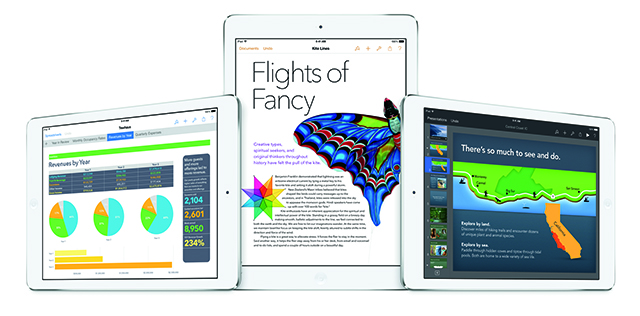
-

Google is broken in IE11 on Windows 8.1
Publié: octobre 19, 2013, 2:34pm CEST par Wayne Williams
 Oh dear. If you try and search using Google in Windows 8.1 there’s a very good chance the results page won’t display properly. Whatever you search for will generate a mangled page that works, but makes finding the results you want rather tricky.
Oh dear. If you try and search using Google in Windows 8.1 there’s a very good chance the results page won’t display properly. Whatever you search for will generate a mangled page that works, but makes finding the results you want rather tricky.This problem doesn’t affect searching using Google in Chrome, or Firefox, it only affects IE11 in both Modern UI and Desktop modes.
Google worked just fine in IE11 prior to the official launch of the new operating system, so it seems rather strange it should be misbehaving now.
Also at the moment it’s difficult to know who is to blame for this cock up -- is it a problem with Microsoft’s browser, or an error at the search giant’s end? I would guess the latter as all the other sites I’ve tried are displaying just fine in IE11. But it's certainly one for the conspiracy theorists.
I’ve asked Microsoft and Google for a comment and will update this post when I hear back. Of course this being a weekend it will likely be Monday before a response is forthcoming and the issue might have been fixed by then…
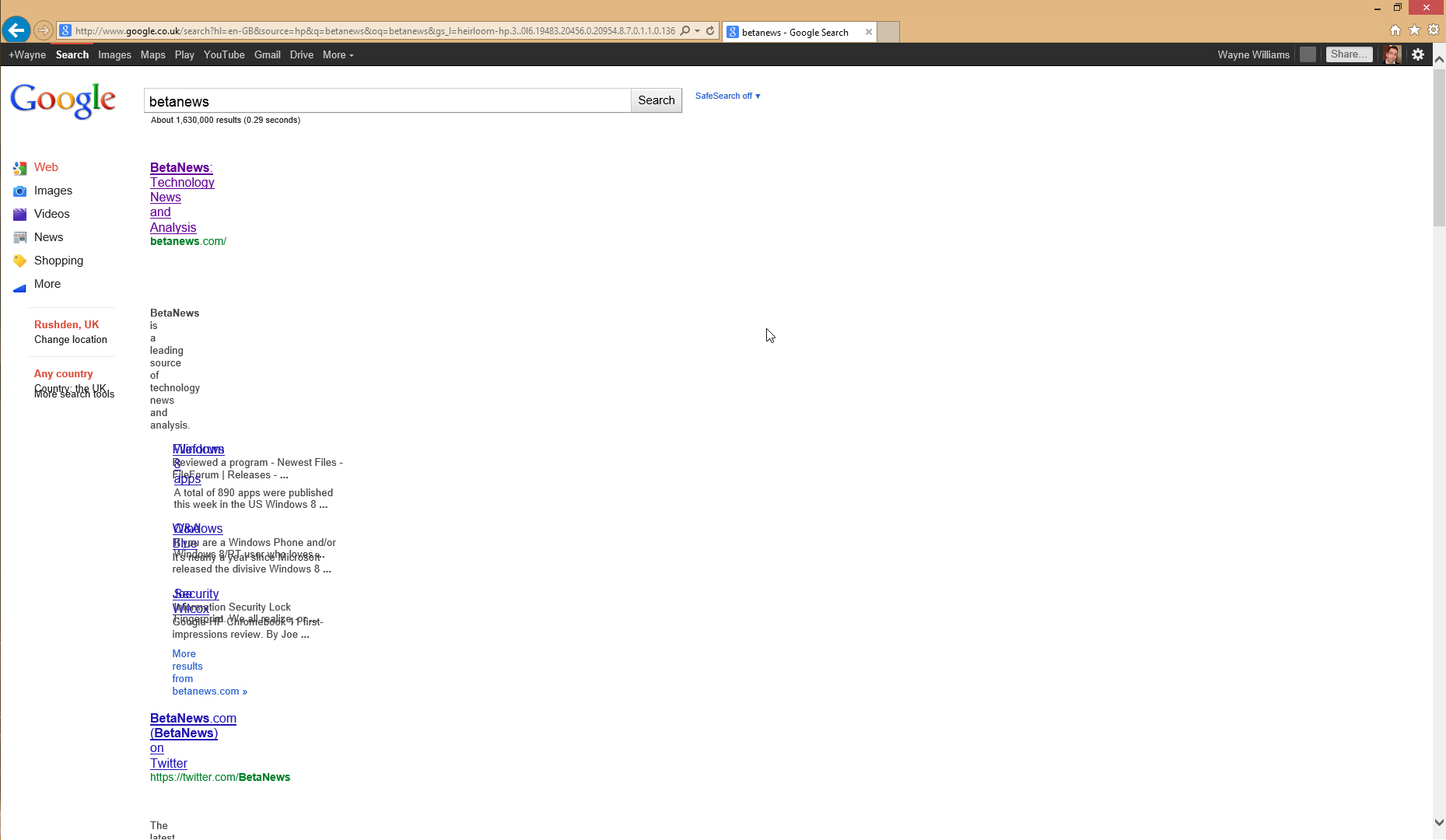 Photo Credit: Denis Belyaevskiy/Shutterstock
Photo Credit: Denis Belyaevskiy/Shutterstock -

Google is broken in IE11 on Windows 8.1 [updated]
Publié: octobre 19, 2013, 2:34pm CEST par Wayne Williams
 Oh dear. If you try and search using Google in Windows 8.1 there’s a very good chance the results page won’t display properly. Whatever you search for will generate a mangled page that works, but makes finding the results you want rather tricky.
Oh dear. If you try and search using Google in Windows 8.1 there’s a very good chance the results page won’t display properly. Whatever you search for will generate a mangled page that works, but makes finding the results you want rather tricky.This problem doesn’t affect searching using Google in Chrome, or Firefox, it only affects IE11 in both Modern UI and Desktop modes.
Google worked just fine in IE11 prior to the official launch of the new operating system, so it seems rather strange it should be misbehaving now.
Also at the moment it’s difficult to know who is to blame for this cock up -- is it a problem with Microsoft’s browser, or an error at the search giant’s end? I would guess the latter as all the other sites I’ve tried are displaying just fine in IE11. But it's certainly one for the conspiracy theorists.
I’ve asked Microsoft and Google for a comment and will update this post when I hear back. Of course this being a weekend it will likely be Monday before a response is forthcoming and the issue might have been fixed by then…
Update: A Microsoft spokesperson tells me "It appears Google made some changes to its search engine that temporarily impacted the way search results rendered for some browsers. We have already made the necessary adjustments to ensure customers using Internet Explorer are not impacted".
 Photo Credit: Denis Belyaevskiy/Shutterstock
Photo Credit: Denis Belyaevskiy/Shutterstock -

Get a REAL Start button and menu in Windows 8.1
Publié: octobre 18, 2013, 12:21pm CEST par Wayne Williams
 So Windows 8.1 is finally here and although it is a massive improvement over its predecessor (I recently had to install Windows 8 on a laptop and couldn’t believe how bad it is in comparison), Microsoft’s new Start button really isn’t what a lot of people were hoping for.
So Windows 8.1 is finally here and although it is a massive improvement over its predecessor (I recently had to install Windows 8 on a laptop and couldn’t believe how bad it is in comparison), Microsoft’s new Start button really isn’t what a lot of people were hoping for.If you want to enjoy the benefits of the new operating system without being bothered by the Modern UI there are lots of alternative third-party options available. And when I say lots, I mean it. Some cost money, others are free. I’ll list my favorite three and then suggest some others to try if those don’t appeal.
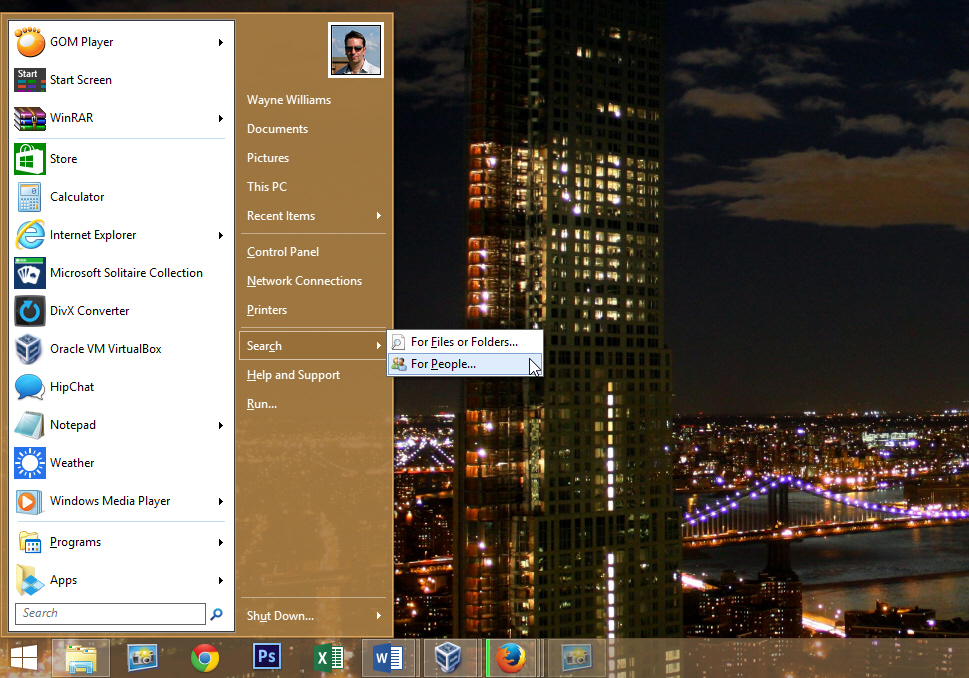
Updated to version 4 at the start of October, and offering improved compatibility with Windows 8.1, this is the Start button and menu combo recommended by most, and for good reason. It’s truly excellent. Once installed it will give you a convincing Windows 7 Start menu with all of the features you’d expect to see. If you’re not a fan of the default menu style there are Classic and Two Columns variations on offer.
It is packed with options, and the latest build introduces a raft of new features including a dedicated shutdown button, the ability to pin programs directly from Explorer and an enhanced Windows Search function.

Although it’s not free, the $4.99 price tag won’t break the bank, and there’s a 30-day trial available so you can take it for a test drive beforehand. The program gives you a Windows 7 style Start menu with Windows 8 enhancements including the ability to pin desktop and Modern UI apps, and support for Jump Lists. It also offers a Windows 8/8.1 style menu which essentially puts the Modern UI (Start or Apps screen) in a pop-up Window. This takes a little getting used to, but actually I quite like it.
You can skin the menus, and change the look of the Start button with a custom image.
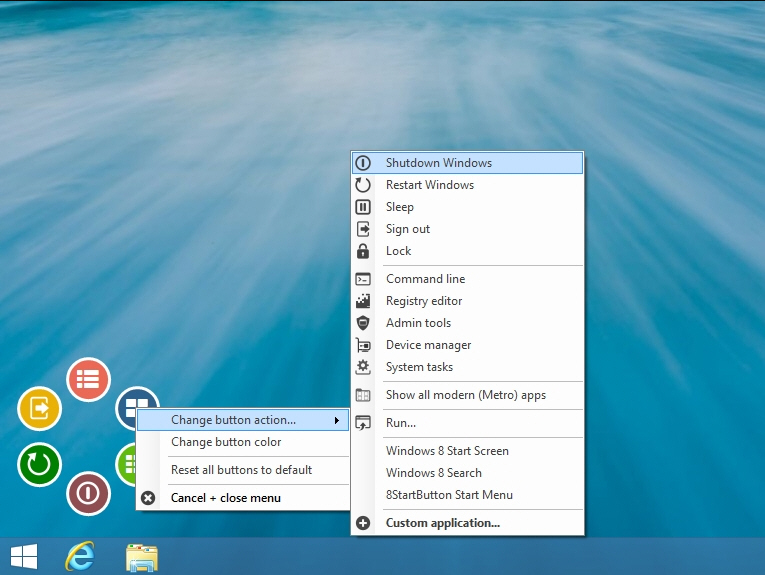
This is a free program that lets you design a personal Start button using your own pictures. It has a customizable menu, tabs that let you quickly switch between Start menu, Start tiles and Recent Documents, and a "Search for programs and documents" box. Don’t like the boring old Windows 7 style menu? There’s a cool alternative radial menu you can use instead. If you want extra features you can upgrade to the paid version for $9.99.
Others to Consider
Please note I haven’t personally tested all of these with Windows 8.1. While they should work fine, I make no promises. If you test one or more out yourself, please let me know in the comments how well (or otherwise) they work with the new OS.
Gives you a real, fully featured Start button and menu that behaves exactly like the one in Windows 7. You get a 30-day trial, after which it will continue to run but in a limited mode. A license for two PCs costs $3, a license for five PCs is $5.
Fully compatible with Windows 8.1, this Start menu is free, although a donation is appreciated. My colleagues at Softwarecrew had some problems with the original build in May, but it was updated in October so should be more reliable now.
Adds a Modern-UI styled touchscreen-friendly menu to the OS which you may well hate, depending on how you feel about the tiled interface.

A free Windows 7-style Start menu. It works fine with Windows 8.1 and gives you a selection of different Start button choices, including a smiley face, coffee cup, and the standard Windows 7 and Windows 8.1 button designs.
A free Start menu from the developer who has previously created alternative menus for Windows Vista and Windows 7.
Compatible with Windows 8.1 this Start menu comes in free and professional editions. The latter costs $9.99.
Another free Windows 7 style menu, it offers quick access to the search box, control panel, documents, all programs and more.
As well as providing a Start menu, this program gives you a mobile like app experience with tons of free apps on offer.
-

Restore Libraries in Windows 8.1
Publié: octobre 17, 2013, 4:11pm CEST par Wayne Williams

You don’t want to save files locally on your hard drive -- you want to store them in the cloud, right? That’s what Microsoft thinks anyway. For that reason it’s baked SkyDrive into the heart of Windows 8.1 and made it the default save-to location for documents.
Although you can easily save elsewhere, one of the main save options, Libraries, has been removed from File Explorer’s sidebar. Another of those weird decisions that the Redmond, Wash. tech giant likes to make from time to time (like giving us a Start button without a Start menu).
Despite appearing to have removed them, Microsoft has simply hidden the Libraries and it’s very easy to restore them to their rightful position.
- In File Explorer click the View tab.
- Click the Navigation button.
- Select Show Libraries and click OK.
Once restored you can click and drag Libraries anywhere you like in the sidebar, right-click to pin them to the Start screen, and so on.
Photo Credit: DavidPinoPhotography/Shutterstock
-

Ever wondered how much time you spend staring at screens?
Publié: octobre 17, 2013, 12:43pm CEST par Wayne Williams
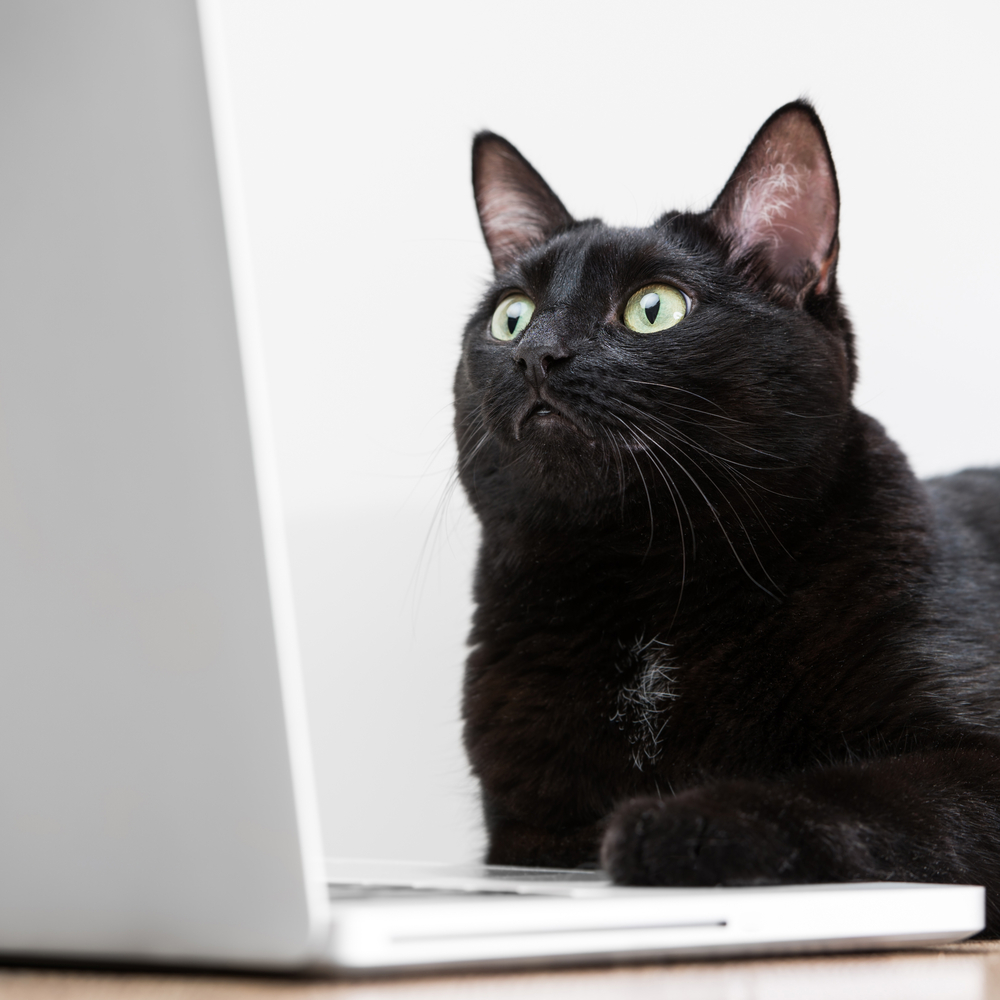 You’ve probably never given any thought to exactly how much time you spend gazing, gawping, glowering and glaring at screens on a daily basis -- but with TVs, computers, tablets and smartphones being such a major part of our lives, you probably won’t be surprised to hear it’s a lot.
You’ve probably never given any thought to exactly how much time you spend gazing, gawping, glowering and glaring at screens on a daily basis -- but with TVs, computers, tablets and smartphones being such a major part of our lives, you probably won’t be surprised to hear it’s a lot.Virtual meetings specialist PGi was curious to find out exactly how much time the average person spends a day looking at various screens and has created an infographic which reveals the shocking (or, depending on your viewpoint, not so shocking) results.
The graphic pulls information from a variety of sources, including eMarketer, The Huffington Post and Gartner, and plots the average number of hours spent each day looking at a laptop/desktop, smartphone/tablet, TV, and "other". It shows that while the television is still hugely popular, computer use overtook it last year, and smartphones and tablets are rising fast.
Almost 50 percent of screen time is devoted to entertainment, with streaming video viewership growing by 50 percent last year. 51 percent of Americans say they watch at least one streaming video a week.
The Screen Fiends infographic also breaks down what we’re doing online, with social networking (20 percent), email (18 percent) and online video (13 percent) accounting for the top three slots.
So just how much time do we spend in front of screens? According to the results it’s a staggering 12 hours a day. And if you factor in the eight hours sleep we’re supposed to get, that leaves just four hours a day when we’re using our eyes to look at the world around us.
Of course the results likely don’t take into account that we’re frequently looking at tablets or mobiles at the same time as watching TV -- meaning it would be wrong to simply add up the time on each device to come up with a grand total -- but even so most of us now spend more time staring at screens than we do sleeping.
Do you think you spend 12 hours a day looking at screens? Is it more/less? Reveal all in the comments below.

Photo Credit: Hasloo Group Production Studio/Shutterstock
-

Here's what's new in Windows 8.1
Publié: octobre 16, 2013, 6:06pm CEST par Wayne Williams
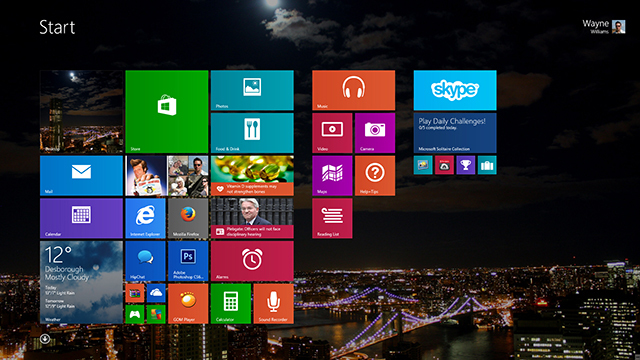
With Windows 8.1 Microsoft has attempted to fix a lot of the things that were wrong with Windows 8, and make the operating system more appealing by throwing a bunch of additional features into the mix. It won’t appeal to everyone, but it is a massive improvement over its predecessor.
If you’re planning on updating your computer to the new OS, or are still on the fence and need a little nudge to join the tiled side, let me take you on a guided tour of what’s new.
Improved Apps
Microsoft has made UI improvements to the Music app, and the Mail app -- which I pretty much ignored in Windows 8 -- is actually really good now. It sorts your mail into categories and lets you manage folders and drag and drop emails around.
There are new apps in the shape of Food & Drink, Health & Fitness, Alarms, Calculator, and Sound Recorder. Reading List lets you save content for reading later.
The Windows Store is finally usable now too -- you can search for the apps you want to install.
Personalization
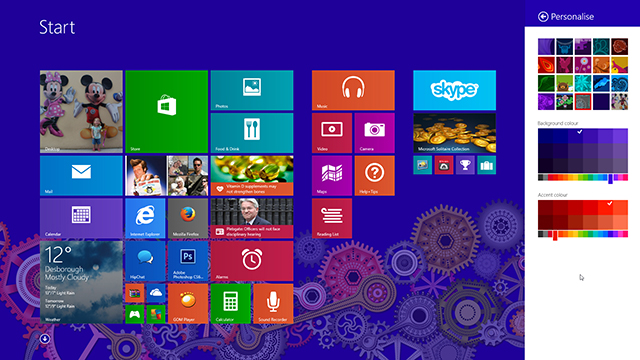
This, for me, is one of the areas where Windows 8.1 really shines. A new Personalize option, accessed through the Settings charm, lets you pick a ready-made background for the Start screen and change the background and/or accent colors. You can also choose to have your desktop wallpaper as the background, so when you switch from the desktop to the Start screen, the transition isn’t so jarring. You can see the changes as you make them, which is useful.
The Start screen now offers a choice of four tile sizes -- Large, Wide, Medium and Small. The new large and small sizes are great and provide more options for organizing your apps. Not all of the sizes are available for all of the apps though. Windows 8.1 automatically detects your screen size and resolution and if you’re running the OS on a big display it will provide more rows.
Tiles can be reordered by dragging and Windows 8.1 makes it easy to select and move lots of tiles around at the same time.
If you really don’t like the Start screen you can now access installed desktop programs and apps in an Apps list. This is like a full-screen Start menu and you can sort the items by Name, Date Installed, Most Used or By Category. Arrows let you switch between the Start and Apps screens, and you can choose either as your default view.
You can also choose now to boot directly to the desktop. Just right-click the taskbar, go to Properties and select the Navigation tab to find the option.
The Start Button
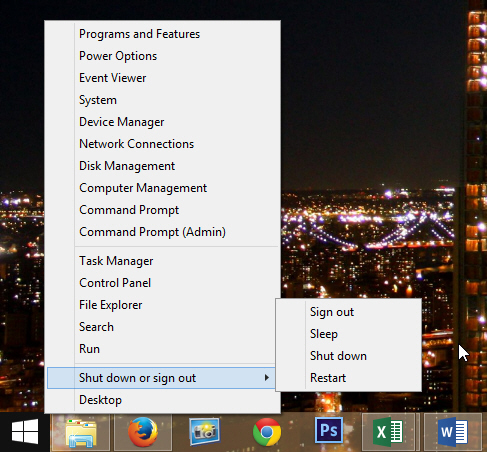
One of the biggest complaints about Windows 8 was the lack of the Start button, although the real complaint was the lack of a Start menu. Microsoft has addressed the first complaint, but not really understood what people were actually asking for. Still, the return of the Start button is a welcome addition and is where you’d expect it to be on the desktop, and appears when you mouse over the bottom left corner in the Start or Apps screens.
Left clicking or tapping the Start button will switch you between desktop and Modern UI modes, while right-clicking on it with a mouse (in any mode) will open a small, non-customizable menu that gives you access to all of the most commonly used options, including shut down and sign out.
Multitasking
The very name "Windows" suggests more than one window. With Windows 8’s apps, you were pretty much stuck to working in the one. You could have two apps side by side, but one had to be big and the other small. In Windows 8.1 that's changed. You can now have them equally sized, and better yet if you’re running Windows on a big screen, and at a high resolution, you can have more than two apps on display at the same time.
SkyDrive
Microsoft’s cloud storage service is baked into Windows 8.1 and when you open File Explorer (the new name for Windows Explorer) you’ll see it as a destination on the left. SkyDrive is now the default save location for your documents, which you’ll view as either a good or bad thing, depending on what you think about working in the cloud. You can course just choose to save files locally.
SkyDrive Smart Files is another useful feature that makes it possible to find the files you want.
Search
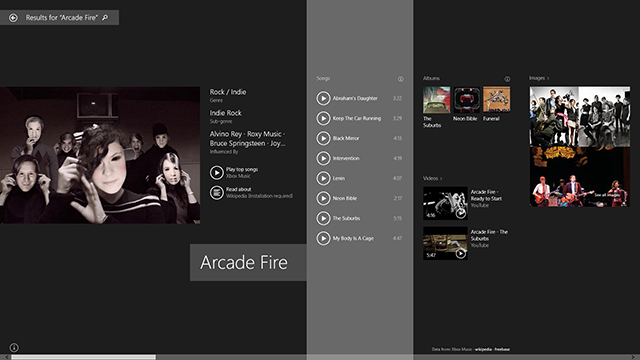
Bing has been heavily baked into Windows 8.1 also. Type anything from the Start or Apps screen and the search box will appear. Windows 8.1 will list any matching apps, settings and files and also display some web matches. Select one of those and the results will open in a full screen.
If you search for a musician or actor, you’ll be presented with an attractive page about them. Searches for singers and bands will also include a list of songs you can listen to. Hit the play button on a track and Xbox Music will open and the chosen song begins to play.
You can search for a web address also and this will open in your default browser.
Internet Explorer 11
Microsoft’s veteran browser has been improved and supports plugin-free HTML5 video, WebGL and the latest standards for closed captioning. It also lets you have up to 100 tabs per window in the Modern UI version, which can now also permanently show tabs and the address bar.
Help+Tips
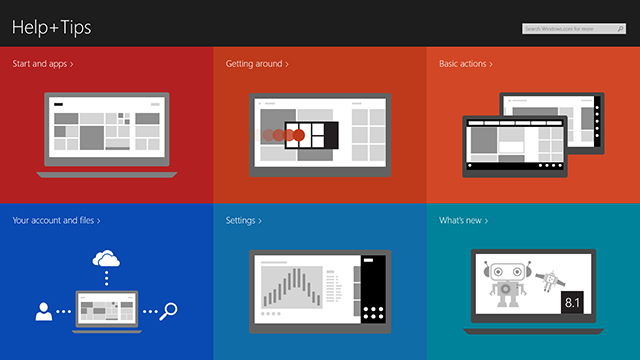
If you’re switching to Windows 8.1 from an earlier operating system you’ll likely be confused as to how things work. A new Help+Tips section provides everything you’ll need to know to master tasks like summoning the Charms bar, switching between apps and closing unwanted ones.
The Charms Bar
This hasn’t altered massively from Windows 8 (although of course there’s the new Personalize option) but one small tweak that I really like is the position of the charms changes depending on whether you summon the bar from the top or bottom right corners. Select the top right, and the charms will appear at the top of the bar. Select the bottom right and they’ll appear near the bottom. Why? So you don’t have to move your mouse very far to select the charm you want. It’s this sort of attention to detail that makes Windows 8.1 so much better than its predecessor.
Summing Up
Of course Windows 8.1 has been tweaked in lots of other ways too, making it more touch friendly, but also less irritating for mouse and keyboard users. It’s a huge improvement over Windows 8 and -- once you get to know it -- it’s better than Windows 7 too, in my opinion at least.
It’s not perfect, and it won’t be for everyone -- I understand that. If you’re happy with Windows 7, XP or even Vista, there may be nothing here to persuade you to switch. But I can assure you, the boot to desktop and Apps screen mean that if you truly hate the Modern UI you can pretty much avoid it entirely now and just reap the other benefits offered by the OS.
If you’ve already converted to Windows 8, then updating to Windows 8.1 is a no brainer. This is the operating system that Windows 8 should have been -- and more.
-

Is Microsoft deliberately misleading buyers over Surface 2?
Publié: octobre 15, 2013, 1:50pm CEST par Wayne Williams
 We all know the original Surface RT failed badly, and there are multiple reasons for its lack of success, including overpricing, poor distribution, commercials that revealed nothing about the product, and of course Windows RT -- the operating system that was a total mystery to consumers. No one knew anything about it. It came out of nowhere, hidden in the shadows of Windows 8.
We all know the original Surface RT failed badly, and there are multiple reasons for its lack of success, including overpricing, poor distribution, commercials that revealed nothing about the product, and of course Windows RT -- the operating system that was a total mystery to consumers. No one knew anything about it. It came out of nowhere, hidden in the shadows of Windows 8.What does RT mean? To anyone? (It’s just another in a long line of ambiguous Windows acronyms, joining the likes of XP, NT and CE). It looks like Windows 8, but it isn’t. It can’t run (most) desktop applications, despite having a desktop, and has other less than obvious limitations too.
In a conversation with ARN, Microsoft's product marketing manager for Surface, Jack Cowett, explained that customer confusion was the reason that the tech giant has removed the RT branding from the second generation Surface PCs.
"We think that there was some confusion in the market last year on the difference between Surface RT and Surface Pro. We want to help make it easier for people, and these are two different products designed for two different people," he says.
While removing the RT branding from Surface will help clear up one major source of customer confusion -- "What’s RT?" -- and no doubt help the product to sell, Microsoft could be accused of deliberately misleading would-be buyers. Surface 2 and Surface Pro 2 are, as Jack Cowett says, "two different products designed for two different people", but there’s no way of getting that from the name.
Anyone who hasn’t done their research beforehand and is thinking of buying one of the new tablets on the basis of an advert they’ve seen, or positive word of mouth perhaps, will be faced with two tablets with similar appellations -- one of which is a lot more expensive and called Pro. Where’s the clue that they aren’t both running Windows 8.1?
Take a look at the information on the Microsoft Store and it says that Surface 2 runs Windows RT 8.1, so the operating system name is there, it’s just buried everywhere else. And Microsoft isn’t doing a very good job of explaining the differences between the two next generation tablets either.
RT was always an awful name, but in choosing to remove (or hide, some might say) the branding, Microsoft isn’t really making things any clearer for consumers. It’s not telling them there are big differences between the operating systems found on Surface 2 and Surface Pro 2.
Educating the public on what RT is would have been a better way of eradicating confusion, or renaming the OS to something more descriptive -- Windows 8.1 Tablet Edition -- would have been an even better move.
While I don’t personally think Microsoft is deliberately misleading consumers with the new Surface name, or by downplaying RT, I do think it could have addressed the problem in a better, more transparent way.
What’s your view?
-

Taper wants to be a doorman for your inbox
Publié: octobre 11, 2013, 12:33pm CEST par Wayne Williams
 I gave up on the idea of "inbox zero" a long time ago, and now simply embrace "inbox full to bursting", but Taper is offering a new approach to email management that might just make it easier to stay on top of things.
I gave up on the idea of "inbox zero" a long time ago, and now simply embrace "inbox full to bursting", but Taper is offering a new approach to email management that might just make it easier to stay on top of things.It’s on Kickstarter now, and currently a long way away from its funding goal (but with over a month still to go) so may never see the light of the day, but it’s such a crazy idea that I wanted to share it with you.
Taper is conceived as a doorman for your inbox. When messages arrive they are let through, but only five at a time. So instead of being bombarded with a ton of emails, you’re greeted with a manageable trickle. Once you delete, archive, move or flag a message, the next one will be allowed in. Taper doesn’t filter anything out, just queues the messages up in the cloud, so they will all arrive eventually, but only when you’re ready to see and deal with them.
You also have the option of setting the frequency of incoming mail, so once you delete a message, the next one can be let through immediately, or -- if you’re busy on other things -- 30 minutes later, it’s up to you.
The obvious flaw with this system is not all emails are equal -- a message from your boss or significant other is obviously more important than a mass mailing. Taper solves this issue with a VIP List. Anyone on this list will immediately move to the front of the line, ensuring that their messages will be the very next emails that Taper lets through. Of course you still need to deal with the emails that are in your inbox before they’ll be allowed in…
The idea of Taper is to make email overload less stressful, but not knowing how many emails you have waiting for you -- a few, or hundreds -- will likely stress you out more than a crowded inbox. Fortunately Taper lets you take a peek in the TaperQueue folder to see how many messages are backed up, and the service can send you a notification listing them too.
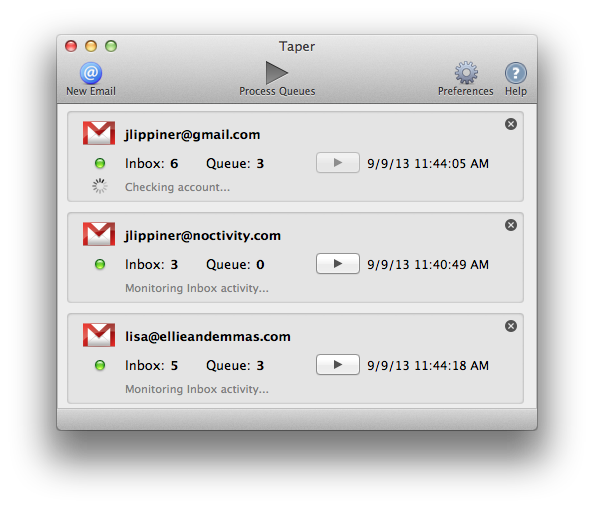 It’s an intriguing idea, and one I’m on the fence about. Most of my emails arrive during the working day, and I usually have my inbox open on a second screen so I can quickly deal with (or ignore) them as they arrive. I rattle through any left overs, and ones that have turned up overnight, first thing in the morning. I also, like most people these days, read and reply to emails on my phone and iPad when I’m not in front of my PC. I’m not sure queuing up messages and dealing with them a handful at a time will benefit me in any real way.
It’s an intriguing idea, and one I’m on the fence about. Most of my emails arrive during the working day, and I usually have my inbox open on a second screen so I can quickly deal with (or ignore) them as they arrive. I rattle through any left overs, and ones that have turned up overnight, first thing in the morning. I also, like most people these days, read and reply to emails on my phone and iPad when I’m not in front of my PC. I’m not sure queuing up messages and dealing with them a handful at a time will benefit me in any real way.What’s your view on Taper -- stupid idea, or the email management solution you’ve been praying for? How do you handle email overload at the moment?
Photo Credit: Dave Clark Digital Photo/Shutterstock
-

Microsoft remains 'fully committed' to protecting customers from malware
Publié: octobre 10, 2013, 12:50pm CEST par Wayne Williams

There’s no question that Windows is a lot safer now than it used to be, thanks to Microsoft adding features like automatic updates, SmartScreen, and Windows Defender to its operating systems. I wouldn’t fully trust the built-in protection as my sole line of defense, but installing security software is no longer the very first thing I do on a new PC.
Dennis Batchelder, Partner Group Program Manager for the Microsoft Malware Protection Center, says that Microsoft remains fully committed to protecting its consumer and business customers, and highlights some of the things the company is doing behind the scenes to keep users safe.
According to Batchelder, although around 80 percent of the malware that customers encounter is known or proactively blocked, new threats are emerging every day, so "Microsoft has developed early warning telemetry and faster signature delivery systems to respond to these".
He goes on to add that the Malware Protection Center exists to "serve and protect" Microsoft’s customers, and so is focusing on real threats. Batchelder says that millions of customers have voluntarily opted to let their computers share telemetry data with Microsoft on encountered threats, helping to identify and prioritize new malware.
Microsoft isn’t working in isolation either, as the company shares its telemetry and samples with anti-virus partners and testers in order to best address real world threats that impact all customers.
Batchelder sums up the Malware Protection Center’s work, saying, "The end result is that, over the past year, our investments have increased the protection quality we deliver to our customers. As of the middle of 2013, we’ve increased our protection quality -- that means less incorrect detections and less misses -- by a significant rate since we first started measuring these metrics in the last quarter of 2011. We are proud of the protection capabilities we provide for well over 150 million computers worldwide with our real-time antimalware products. We believe in Microsoft antimalware products and strongly recommend them to our customers, to our friends, and to our families".
Do you trust Microsoft to protect you at home or work?
Photo Credit: solarseven/Shutterstock
-

Should webmail providers recycle unused addresses?
Publié: octobre 7, 2013, 7:39pm CEST par Wayne Williams
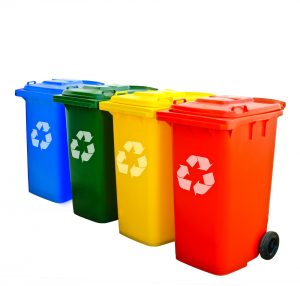 When Yahoo announced plans to recycle inactive email addresses, concerns were raised about the possibility of the new address owner getting emails intended for the previous occupant. It turned out to be a valid fear as my own experience shows.
When Yahoo announced plans to recycle inactive email addresses, concerns were raised about the possibility of the new address owner getting emails intended for the previous occupant. It turned out to be a valid fear as my own experience shows.But Yahoo is not alone in recycling email addresses. According to a report from PC World, Microsoft is quietly doing the exact same thing with Outlook.com email accounts. A spokesman for the software giant told Webwereld, a Dutch IDG publication, "the email account is automatically queued for deletion from our servers. Then, after a total of 360 days, the email account name is made available again".
I asked Microsoft for a comment on the claims and was told simply "At this time, we have nothing more to share beyond what’s in the Microsoft Services Agreement".
Google doesn’t reuse email addresses in this way, although that’s not to say it won’t do so in the future. It's likely sitting on a very large pile of deactivated accounts.
But should companies be able to recycle addresses? It’s certainly a topic for debate. On one hand there’s the legitimate privacy concern, but then there are only a finite number of decent email addresses to go around. It’s frustrating enough having to accept an email address like yourname3256@yahoo.com, (or something crazy like mrvampirebadger@yahoo.com) but even worse when yourname@yahoo.com is sitting around unused and available.
It’s important to remember too, that Yahoo Mail, Outlook.com and Gmail are all entirely free services (albeit ad-supported ones). When we sign up for a mail account should we reasonably expect to own an address forever and a day, even after death or when we haven’t logged into the account or sent a message from it in a year or so?
I’ll admit I’ve signed up for additional Gmail accounts in the past to use for specific projects, but which I don’t now need or use. I probably have a couple of addresses I don’t even remember signing up for. I’m more than happy for those to go to new homes (and indeed will track them down and delete them later).
Maybe the solution to the problem is to offer people a chance to pay a small fee to secure their choice of address for "life". Or make the recycling of an address opt-in or opt-out (you express your preference at sign up).
What’s your view on the subject?
Photo Credit: kongsky/Shutterstock
-

The BFI announces new online movie-streaming service
Publié: octobre 2, 2013, 3:32pm CEST par Wayne Williams
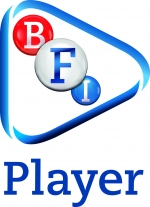 The British Film Institute (BFI) today announces plans to launch its own online movie-streaming service, offering a mix of free and paid-for viewing, all presented in HD quality.
The British Film Institute (BFI) today announces plans to launch its own online movie-streaming service, offering a mix of free and paid-for viewing, all presented in HD quality.BFI Chair Greg Dyke unveiled the BFI Player at a London press event earlier today, saying: "The launch of the BFI Player is a defining moment in the BFI’s 80 year history -- it will unlock the past, present and future of British film and, most importantly, offers a new deal for UK audiences to get great films out to as many people as possible across the UK. I’m really excited about the BFI Player’s potential. The BFI is pivotal to identifying great films and nurturing and giving a voice to great filmmakers in the UK and now offers a platform to take these stories out to whole new audiences".
Launching to coincide with the BFI London Film Festival, the service will be available nationwide from 9 October and offer a mix of free (approx. 60 percent) and pay-per-view (approx. 40 percent) content including hundreds of films.
The BFI Player will launch with seven different channels, or "collections":
- London Film Festival Presents; exclusive red carpet action, talent interviews and special behind the scenes access to the UK’s most important film festival.
- Backed by the BFI; the best of British cinema -- a showcase of some of the finest films, many funded by the BFI Film Fund.
- Edwardian Britain; for the first time ever all 28 hours of the extraordinary films of pioneering filmmakers Sagar Mitchell and James Kenyon, c.1900 -- 1912.
- GOTHIC: The Dark Heart of Film; The BFI’s blockbuster project featuring four compelling themes Monstrous, The Dark Arts, Haunted and Love is a Devil.
- Cult Cinema; a passport to an exciting and surprising world of cult British cinema from the BFI’s Flipside DVD label.
- Inside Film; films about filmmaking for filmmakers and all those who love cinema.
- Sight and Sound Selects (from the magazine's Greatest Film poll); a growing selection of the best films of all time.
- Enabling distributors, empowering filmmakers.
The BFI will be making Clio Barnard’s debut feature, The Selfish Giant, available to watch on the player on the same day as its UK theatrical release (25 October). The newly restored The Epic of Everest (1924) will be available to view on the same day as its premiere at the BFI London Film festival too (18 October).

Edward Humphrey, BFI Director of Digital said: "Audience behavior has shifted to embrace digital platforms, now the BFI Player gives us a foundation from which we can support a digital future for film lovers and bring the story of film to a truly national audience. The UK film industry leads the world in digital innovation and we hope the BFI Player will quickly become an essential element in the distribution models of tomorrow".
The BFI says the new player will evolve and grow as new partners and increasing content come on board over the coming months. Phase 2 of the BFI Player is set to launch in early 2014.
-

Windows 7’s growth currently outpacing that of Windows 8
Publié: octobre 1, 2013, 8:42pm CEST par Wayne Williams
 There’s not long to go now until Microsoft unleashes Windows 8.1 upon the world. In my view the operating system refresh is Windows 8 done properly, but whether it does enough to win over the masses remains to be seen.
There’s not long to go now until Microsoft unleashes Windows 8.1 upon the world. In my view the operating system refresh is Windows 8 done properly, but whether it does enough to win over the masses remains to be seen.Certainly Microsoft will be hoping for a change in fortunes because the tiled operating system's market share is currently pretty poor -- at least when you factor in how much of a push the Redmond, Wash.-based software giant has put behind it.
According to NetApplications, which keeps a beady eye on such things, Windows 8 gained a 0.61 percent increase last month, giving the OS third place with an 8.02 percent market share. Windows 7 remains far and away the most popular operating system, with 46.43 percent of the market, followed closely by Windows XP with 31.41 percent.
Windows Vista has 3.98 percent (seriously, upgrade already) and Linux (all versions of OS) 1.64 percent. The various iterations of Mac OS X amount to around 7.54 percent.
Windows 8.1 currently has 0.87 percent, presumably made up of both Preview and RTM builds.
NetApplications lets you view market share by month, which makes it possible to view the changing fortunes of the major operating systems.
In August, Windows 8 had 7.41 percent while Windows 7 stood at 45.63 percent, meaning Windows 7 grew by 0.8 percent in September, 0.19 percent more than Windows 8 over the same time frame. XP was the OS conceding share with a drop of 2.25 percent.
Up until last month, however, Windows 8’s share was growing faster than Windows 7 (although the older OS was not far off the pace), so the slowdown in September is likely due to consumers biding their time and waiting for Windows 8.1 to arrive before upgrading.
Photo credit: Maridav/Shutterstock
-

AirCover Security promises all-in-one protection for your Android device [Review]
Publié: septembre 27, 2013, 12:45pm CEST par Wayne Williams
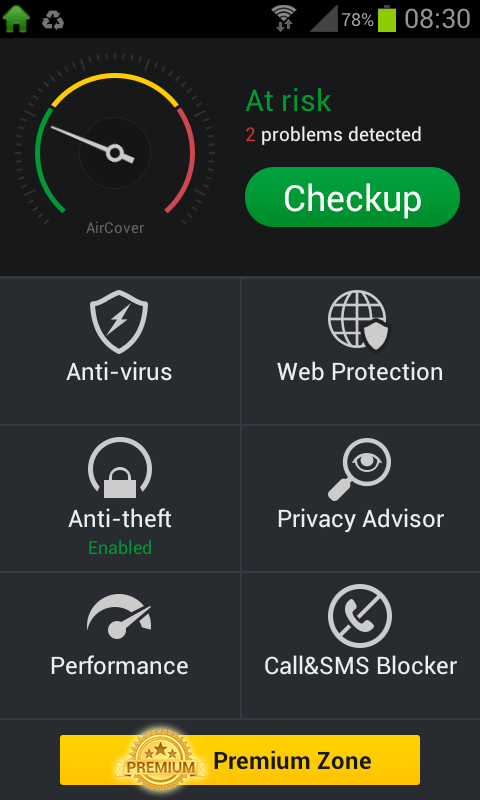 All of the major antivirus firms -- big names like Symantec, McAfee, AVG and Kaspersky -- offer mobile security apps for Android which can help protect against malware and theft. There are offerings from lesser known companies available too.
All of the major antivirus firms -- big names like Symantec, McAfee, AVG and Kaspersky -- offer mobile security apps for Android which can help protect against malware and theft. There are offerings from lesser known companies available too.BlueSprig is a newcomer in this field, but its AirCover Security Android app is a comprehensive offering which can protect against malware and theft, help boost your privacy, block unwanted calls and SMS messages, and safeguard you on the web, as well as optimize your system.
The app is free, with the option to unlock further premium features should you choose to. This is what you get:
Anti-virus -- This offers real-time and on-demand protection and you can run Fast, Full and Custom scans. A Logs screen will let you see how long the app has been protecting you, the number of items scanned and how much (if any) malware was detected. It will also show you the number of malicious URLs blocked and the number of URLs and accounts protected. There are Threat and Operation logs too (the latter lists when scans and checkups have started and completed). With the free version you need to manually update the virus database.
Anti-Theft -- To use this element you first need to set up to an account so you can remotely locate, or lock a missing phone, sound an alarm, wipe private data and back up your contacts. You can try the alarm and location features from your phone without setting up an account.
Web Protection -- This protects accounts like Facebook, Gmail, Google Play and YouTube from phishing, fraud, harmful sites and malware. There’s also a malicious URL blocker.
Privacy Advisor -- This contains four elements:
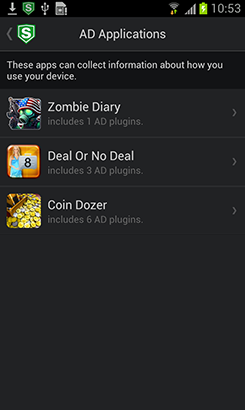 AD detector which lists installed apps that collect data about how you use your device and lets you uninstall any that sound suspicious.
AD detector which lists installed apps that collect data about how you use your device and lets you uninstall any that sound suspicious.- App privacy list which shows you the apps that are allowed to perform certain actions, such as access identifying info, make phone calls, read location details, access your contacts, access SMS, and record sounds.
- Vulnerability Scan which checks for weak settings (such as the ability to run apps from third party stores). To actually view the results you need to upgrade to the premium version.
- Anti-surveillance detects any installed apps that can listen in to your conversation and helps you remove them. This is a premium only feature.
Call&SMS Blocker -- does what it says and lets you block and allow calls and SMS messages from certain numbers.
Performance -- A single Speed Up button kills non-essential tasks and removes junk files and usage history. You can browse the list of running apps and manually end any you don’t require, clear the caches of selected apps, remove lost files, log files, temp files and thumbnails, and wipe the browser and clipboard history.
Upgrading to premium costs $1.99 for 30 days, $7.99 for six months and $11.99 for 12 months, making it more affordable than a lot of the alternative security apps. The paid version gains virus database auto update, and advanced anti-theft features such as Intruder Alert (takes and emails you a photo when someone tries to access your phone after you’ve locked it), Data Deletion and SIM Monitoring (you’ll be alerted if someone swaps the SIM in your device). You also get the Anti-surveillance and full Vulnerability Scan, and Financial Protection which safeguards you when entering payment details online.
Summing Up
I’ve been using the app for a short while now, with all the premium features enabled, and I really like it. It hasn’t noticeably had an effect on battery life, and it’s straightforward to use with a good selection of the features available. Any functions you don’t require are easily disabled within the app. The anti-theft features work as advertised, but I can’t yet vouch for the app's ability to detect malware or block malicious URLs as I don’t install apps from third-party stores or visit potentially dodgy sites from my phone. Should I do so, however, I’m fairly confident AirCover Security will alert me to any problems.
You can download the app for free from Google Play.
-

Watch Microsoft's Surface 2 presentation here
Publié: septembre 23, 2013, 7:28pm CEST par Wayne Williams
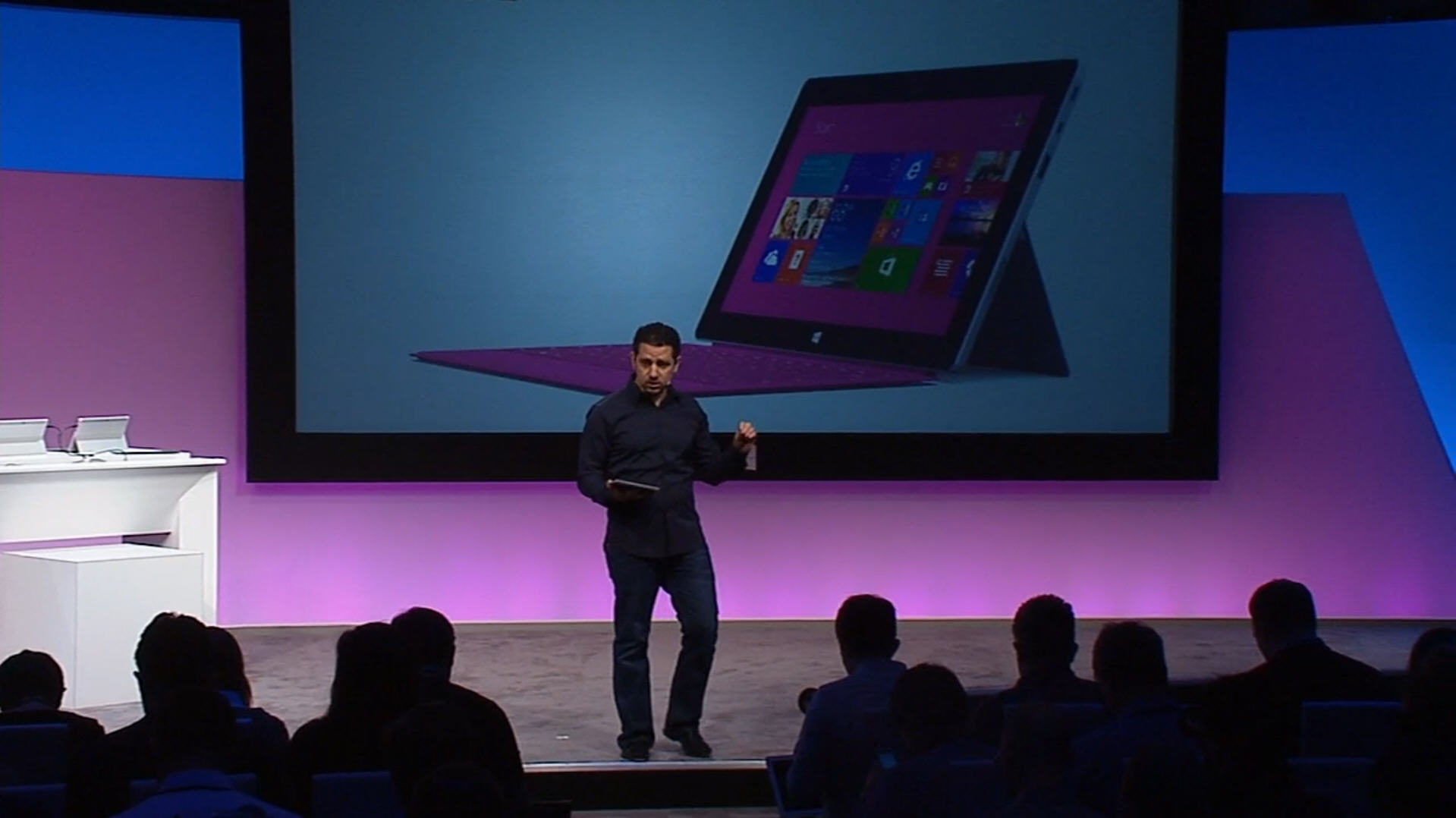
Microsoft chose not to live stream its Surface 2 reveal earlier today, but fortunately our own Brian Fagioli was in New York to cover the unfolding events in an excellent live blog. Now that the event is over Microsoft has made the full on-demand video of the proceedings available for anyone to watch.
During the one hour (and a bit) event Microsoft unveiled the Surface 2 and Surface Pro 2 tablets as well as a whole load of accessories, including "Blades", a new type of touch cover which can be customized for different uses. Brian described it as a "potential game-changer" and hasn’t stopped raving about it ever since.
Whether the new tablets will be enough to reverse Surface’s fortunes remains to be seen, certainly they’ve generated some interesting conversations in our newsroom.
Anyway, if you’re interested in seeing the presentation, hit play, sit back and enjoy.
And then as always leave your thoughts and comments below.
-

Apple breaks its sales record, sells 9 million iPhone 5s and 5c models in opening weekend
Publié: septembre 23, 2013, 3:17pm CEST par Wayne Williams
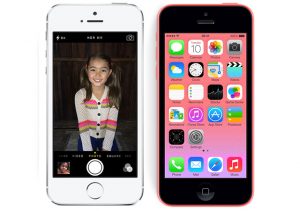 With queues stretching around Apple stores and talk about stock sell-outs dominating the tech news, it comes as no surprise that the iPhone 5s and 5c enjoyed brisk sales this launch weekend. The only question was exactly how many units the Cupertino, Calif.-based tech giant would shift of its new devices.
With queues stretching around Apple stores and talk about stock sell-outs dominating the tech news, it comes as no surprise that the iPhone 5s and 5c enjoyed brisk sales this launch weekend. The only question was exactly how many units the Cupertino, Calif.-based tech giant would shift of its new devices.While Apple predictably doesn’t break the number down into 5s and 5c sales, we now know thanks to an official announcement that combined the devices sold some 9 million units worldwide in the three days since they launched on 20 September. This beats the previous record for first weekend iPhone sales, which was 5 million for the iPhone 5 last year.
In addition, Apple says over 200 million iOS devices are now running the redesigned and divisive iOS 7, making it the fastest software upgrade in history.
"This is our best iPhone launch yet -- more than nine million new iPhones sold -- a new record for first weekend sales," says Tim Cook, Apple's CEO. "The demand for the new iPhones has been incredible, and while we've sold out of our initial supply of iPhone 5s, stores continue to receive new iPhone shipments regularly. We appreciate everyone's patience and are working hard to build enough new iPhones for everyone".
In a piece he wrote last week, my colleague Joe Wilcox said, "Expect the company to combine both phone sales, when boasted in PR, to give greater sense of demand. That's a way to hide whether or not sales of one is weak. Apple does this with iPad, by not breaking out mini sales, which by all analyst estimates cannibalize sales of the larger tablet", which of course was spot on. However, early indications suggest the iPhone 5s is outselling the 5c by at least 3 to 1.
-

iPhone 5s comfortably outselling the plastic bodied 5c
Publié: septembre 23, 2013, 11:40am CEST par Wayne Williams
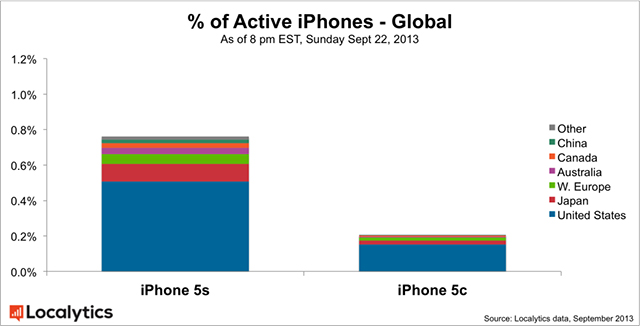
Despite being the cheaper -- or rather more affordable -- of the two new iPhones, and available in a choice of bright pastel colors, the iPhone 5c was always going to struggle to win the hearts and minds of the Apple faithful, especially with the iPhone 5s grabbing most of the attention with its own new colors, 64-bit processor and fingerprint scanner.
So it should come as no surprise that the plastic 5c is currently getting trounced in the sales department by its metallic sibling, although both appear to be selling very well.
According to Localytics, which examined data from over 20 million unique iPhones, beginning on 20 September -- when the new devices went on sale -- and ending at 8 PM ET on Sunday, 22 September, the new models combined now represent about 1.36 percent of the total number of all iPhones activated in the US. AT&T accounted for 0.67 percent of all activated new iPhones (5s and 5c), Verizon 0.51 percent, Sprint 0.12 percent and T-Mobile 0.07 percent.
Localytics says, based on its findings, that 1.05 percent of all iPhones in the United States are now iPhone 5s, and just 0.31 percent are iPhone 5c, meaning the flagship is outselling the cheaper model by a factor of 3.4x.
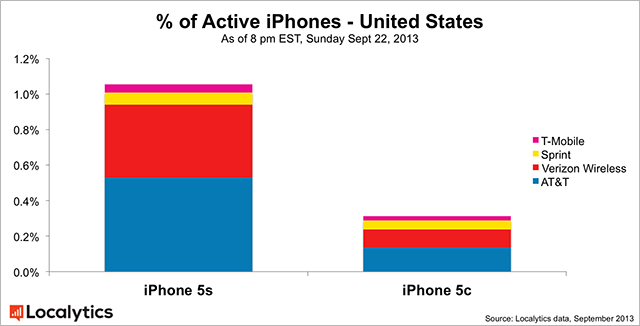
Unsurprisingly, sales in the US are considerably higher than anywhere else in the world but Localytics says adoption patterns are similar overseas, with the 5s outpacing the 5c by a factor of 3.7x globally. In Japan the 5s is five times as popular as the 5c.
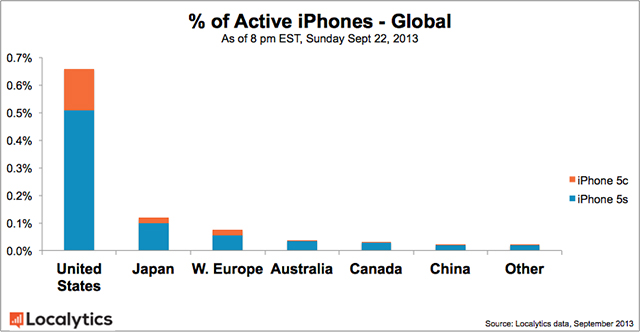
Of course, the opening weekend’s sales may not be representative of the long term picture. As Bernd Leger, VP of Marketing at Localytics points out, "those who feel the need to buy a new device the very weekend it launches are most likely the power users who want the highest-end phone experience".
Did you buy one of the new iPhones over the weekend, and if so which model did you go for?
-

App downloads set to hit 102 billion in 2013 -- mostly all free
Publié: septembre 20, 2013, 2:41pm CEST par Wayne Williams
 If you own a smartphone it’s likely you download apps for it, and given the proliferation of mobile devices, it’s not surprising that the volume of app downloads is continuing to rocket.
If you own a smartphone it’s likely you download apps for it, and given the proliferation of mobile devices, it’s not surprising that the volume of app downloads is continuing to rocket.According to Gartner, mobile app stores will see annual downloads reach 102 billion in 2013, up from 64 billion in 2012, with free apps accounting for a whopping 91 percent of the total downloads this year.
"Free apps currently account for about 60 percent and 80 percent of the total available apps in Apple's App Store and Google Play, respectively," says Brian Blau, research director at Gartner.
While it’s obviously difficult to make a paid app stand out in a hugely crowded marketplace, there is still money to be made, with total revenue from apps set to reach $26 billion this year, up from $18 billion in 2012. Gartner predicts that in-app purchases (IAPs) will account for 48 percent of app store revenue by 2017, up from 11 percent last year.
"We expect strong growth in downloads through 2014, but growth is forecast to slow down a bit in later years," says Sandy Shen, research director at Gartner. "The average downloads per device should be high in early years as users get new devices and discover the apps they like. Over time they accumulate a portfolio of apps they like and stick to, so there will be moderate numbers of downloads in the later years".
"iOS and Android app stores combined are forecast to account for 90 percent of global downloads in 2017," Brian Blau says. "These app stores are still increasingly active due to richer ecosystems and large and very active developer communities. However, we expect average monthly downloads per iOS device to decline from 4.9 in 2013 to 3.9 in 2017, while average monthly downloads per Android device will decline from 6.2 in 2013 to 5.8 in 2017. This relates back to the overall trend of users using the same apps more often rather than downloading new ones".
Mobile App Store Downloads, Worldwide, 2010-2016 (Millions of Downloads)
2012
2013
2014
2014
2016
2017
Free Downloads 57,331
82,876
127,704
167,054
211,313
253,914
Paid-for Downloads 6,654
9,186
11,105
12,574
13,488
14,778
Total Downloads 63,985
102,062
138,809
179,628
224,801
268,692
Free Downloads % 89.6
91.0
92.0
93.0
94.0
94.5
Source: Gartner (September 2013)
Additional information is available in Gartner’s report "Forecast: Mobile App Stores, Worldwide, 2013 Update".
Image Credit: KROMKRATHOG/Shutterstock
-

Microsoft: Windows is superior to Android for government and education needs
Publié: septembre 20, 2013, 10:09am CEST par Wayne Williams
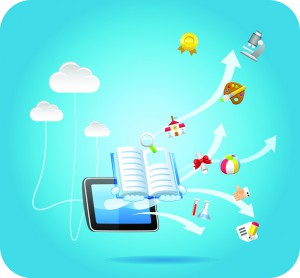 A new white paper compares Android and Windows devices for use in the public sector and education. It looks at four areas it considers critical -- ease of use, security, productivity and lifecycle -- and finds Windows devices to be the "superior choice".
A new white paper compares Android and Windows devices for use in the public sector and education. It looks at four areas it considers critical -- ease of use, security, productivity and lifecycle -- and finds Windows devices to be the "superior choice".The paper says there are "significant challenges and issues with Android" and that Windows devices "offer better security and utility, enabling new usage models AND more productive users, while giving IT flexible deployment options to evolve the existing infrastructure and in some cases even produce savings as no new processes need to be developed". But since the white paper comes from Microsoft, those findings are unsurprising.
Obvious bias aside, the paper -- which discusses the penetration of tablets in the public sector and the challenges facing organizations as they evolve their IT infrastructure -- makes some good points.
Microsoft highlights the fact that Google and OEMs do not go back and update all older versions of Android (and devices) with security patches and fixes, and even if they did, "there is no common, streamlined way to get those updates out to the install base of Android devices".
It also says the "hackable nature of Android continues to leave big potential security holes", and the ability to run apps from anywhere makes it vulnerable to malware.
Pushing Windows devices as the far better choice, Microsoft (naturally) mentions Office and lists the following benefits:
- An engaging, first-in-class user experience and familiar software tools that are ubiquitous in the workplace.
- Wide choice of manufacturers, form factors, styles, and price points for every need;
- A seamless experience across devices, allowing users to collaborate, store and share their work through SkyDrive/SkyDrive Pro from any web-capable device, sharing apps and settings for a single user across multiple devices.
The white paper also includes a table summarizing the comparison between Android and Windows based devices and how they map to the government and educational customer needs:
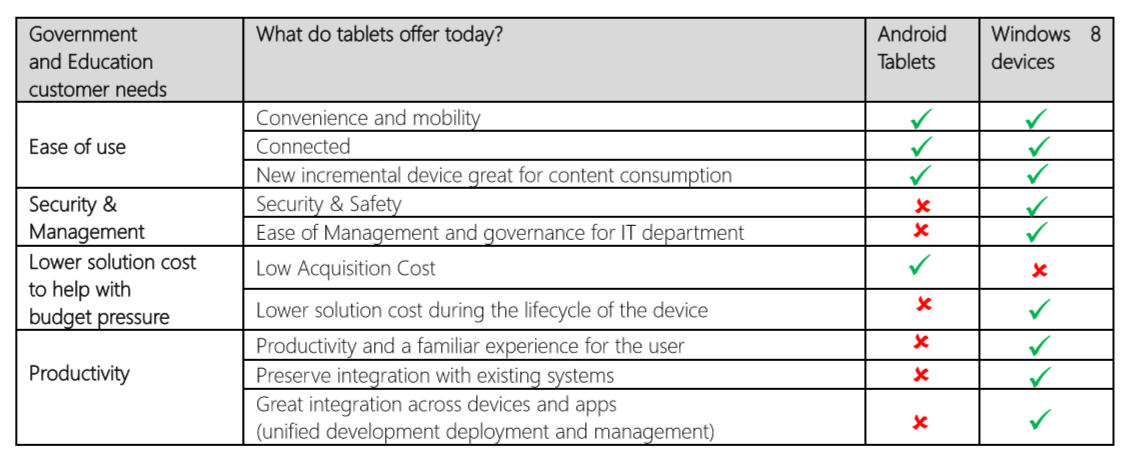
In a blog post to go with the white paper, the Microsoft Education Team says:
The meteoric rise of Android-based tablets in the consumer space, driven mainly by accessible prices points, made many people explore if such devices could be leveraged for Government and Education programs. Android-based tablets have a lot of obvious appeal considering low acquisition costs against tight public budgets. Yet, are there better choices out there?
Yes -- Apple has some products that might fit…
It’s interesting that Microsoft has chosen to target Android with this white paper. Presumably because it’s the easier target. The mobile OS does have potential (and well documented) security issues after all.
The white paper is available to read here.
Image Credit: Ziven/Shutterstock
-

7 things I LOVE about iOS 7
Publié: septembre 19, 2013, 2:15pm CEST par Wayne Williams
 Like my colleague Mark Wilson, I was excited about the launch of iOS 7 yesterday, but the update to the new mobile operating system took hours and hours to complete. Starting, failing, doing nothing… When the upgrade finally began -- for real -- it did so at a glacial pace. I have a 100Mbps connection, but the iOS 7 download was at dial-up speeds.
Like my colleague Mark Wilson, I was excited about the launch of iOS 7 yesterday, but the update to the new mobile operating system took hours and hours to complete. Starting, failing, doing nothing… When the upgrade finally began -- for real -- it did so at a glacial pace. I have a 100Mbps connection, but the iOS 7 download was at dial-up speeds.Eventually though, the install was complete, and after a few seconds of setting it up (choosing a PIN in case someone stole my iPad, etc.), I was good to go. By this time I’d read a lot of negative comments and was expecting the worst… but actually I really like iOS 7.
I have several iPod touches, but they are all too old (3rd and 4th generation) for the upgrade, so only my 4th gen iPad and my wife's iPad mini were up to the task. That means I won’t get to use some of the new features offered by the new iOS -- the flashlight option in the iPhone for example (no great loss). Also, I live in the UK, so certain features, like iTunes Radio, aren’t available to me either.
Despite that, I’ve found plenty to like about iOS 7.
1. Beauty is in the eye of the beholder, and while Mark says the beauty has gone from iOS, I disagree. The new lighter typeface -- Helvetica Neue Ultralight -- is modern, the flat colorful iOS 7 icons are smart (and the effect will be better when more developers update their app icons to match) and the parallax wobbling that occurs when you move the device about adds depth to the whole look. I’ve never been a fan of skeuomorphism, so I certainly won’t miss that. The animations, icons flying in for example, are lovely too.
2. While the new app switcher will definitely take time to get used to, I already like it. The cards show me what each app is (the thumbnails update in real time to reflect any changes), and the icons are still there. What I really like is you can now kill apps you’re not using simply by flicking their thumbnail upwards. So much easier than the old method.
3. The new notifications screen is great. Before it served very little purpose, now it can show you pretty much everything, including the weather, calendar appointments, messages, and app alerts. All of which can be configured in the Notification Center under settings.
4. One of the most useful new features is the Control Center which you open by swiping up from the bottom of the homescreen. This gives you quick access to audio controls, volume, and shortcuts like the Camera and Clock. Plus you’ll also find quick toggles here so you can switch to Airplane Mode, turn Wi-Fi or Bluetooth on or off, activate Do Not Disturb and Orientation Lock, and more, all with the minimum of fuss. I don’t care that this is something that’s long been available in Android, I like it’s here finally and easy to use in iOS.
5. I’ve never really used Siri much, but he/she has been seriously improved and can now pull data from Wikipedia, Bing and Twitter, perform extra tasks and the new interface shows you answers without your needing to leave Siri. A waveform at the bottom of the page lets you know when the virtual assistant is listening.
6. If I want to share items on my iPad with someone else who has iOS 7 installed -- such as send photos to my wife’s iPad mini -- I can use AirDrop. I just tap the Share button and select her device. The Control Center lets me choose who I can share with -- just contacts, everyone, or no one.
7. Mark hates the new Spotlight and wants to know "Why change this?!" The answer is because the feature never needed its own page. Now it’s accessed by swiping down from the center of the screen, and waits unobtrusively for you to enter your search. What’s great about this is if -- like me -- you eschew folders in favor of pages and pages of apps, you can launch Spotlight from any page on the homescreen, you don’t need to scroll all the way over to the left.
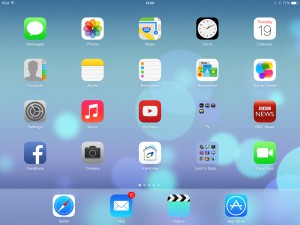 I could actually find a lot more than seven things I love. The lock screen for example, is one of them. I can access the notifications from here without unlocking the screen, and unlocking is done by swiping to the right from anywhere, not just flicking a switch at the bottom.
I could actually find a lot more than seven things I love. The lock screen for example, is one of them. I can access the notifications from here without unlocking the screen, and unlocking is done by swiping to the right from anywhere, not just flicking a switch at the bottom.iOS 7 is not perfect by any means, and I can certainly find faults with it, but the new incarnation is a major improvement over past iterations of the OS and forms a solid foundation for the future.
My colleague Mark Wilson lists seven things he hates about iOS 7 here. If you've upgraded to the new OS, what's your view of it? Do you love it, hate it, or are you undecided? Leave your comments below.
Photo Credit: Arcady/Shutterstock
-

Internet Explorer 11 Release Preview now available for Windows 7
Publié: septembre 18, 2013, 4:53pm CEST par Wayne Williams
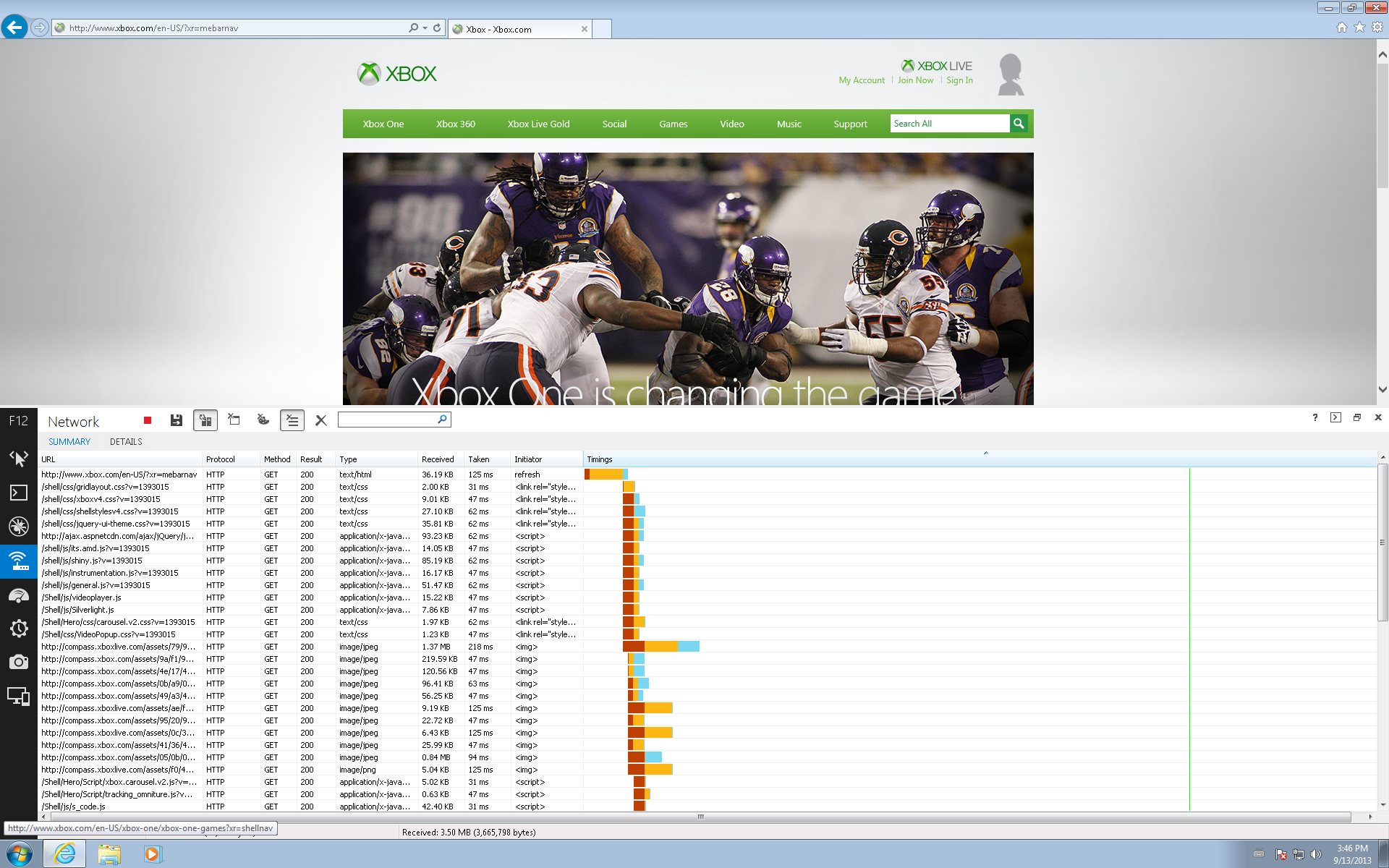
Internet Explorer 11 is a big improvement over previous versions of Microsoft’s browser, but it’s only available on Windows 8.1. Or rather that was the case. Following on from the early Developer Preview put out in late July, Microsoft has announced a Release Preview of its new browser for Windows 7.
Building on IE10, Internet Explorer 11 is speedier -- Microsoft says the performance improvements make it 30 percent faster than other browsers -- and introduces support for the latest web standards, such as WebGL.
According to Microsoft, "With IE11 on Windows 7, customers receive a fast, secure browser that is compatible with existing web sites and delivers exciting new interactive web experiences".
Developers will be able to download virtual images of the IE11 Release Preview for Windows 7 on modern.ie, later this week, along with updates to the F12 developer tools.
There’s no fixed date for when the finished Windows 7 version will be released, Microsoft says only "later this fall". IE11 on Windows 8.1 will of course be available as part of the OS refresh which launches on October 18.
You can see some of the performance and developer tools enhancements in IE11 Release Preview for Windows 7 in this new video.
The software giant would also like you to rethink your relationship with its browser and has produced another new video which challenges the preconceptions of a random selection of people and tries to get them to give Internet Explorer another chance. Does what you see change your mind about Microsoft's browser?
-

Windows 8.1 Enterprise RTM now available for TechNet and MSDN subscribers
Publié: septembre 18, 2013, 9:20am CEST par Wayne Williams
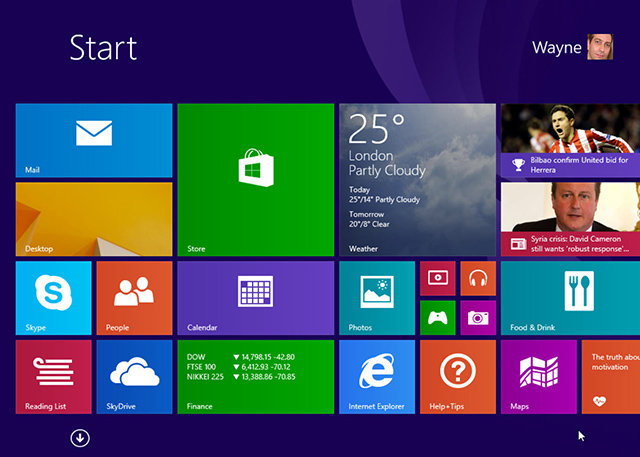 After saying everyone except hardware partners would need to wait until next month to get their hands on Windows 8.1, Microsoft last week relented and made the RTM available to developers and IT professionals.
After saying everyone except hardware partners would need to wait until next month to get their hands on Windows 8.1, Microsoft last week relented and made the RTM available to developers and IT professionals.Oddly there was no sign of the Windows 8.1 Enterprise RTM at the time, with Microsoft saying only that it would be available later this month. Fortunately, it turns out the wait wasn’t a long one, as the build is now available for Volume License customers as well as TechNet and MSDN subscribers.
Making the announcement over on the Windows for your Business blog, Erwin Visse, general Manager of commercial for the Windows division, says "Windows 8.1 is designed with businesses in mind" and goes on to push firms towards the tiled OS, stating, "If you have not started, begin your Windows 8.1 planning today. We encourage you to evaluate Windows 8.1 RTM bits to get a jump start on your deployment planning, using it with the new deployment tools that are already available to create a fully-functional model of the deployment processes that you will use once Windows 8.1 Enterprise is generally available on October 18".
The key features available in Windows 8.1 Enterprise include:
- Capabilities that enable a mobile workforce.
- More control over employee access to data.
- Better management tools for BYOD scenarios.
- Improved security.
The full list of new features in the enterprise build can be found here.
Volume License customers will need an active Software Assurance agreement to download Windows 8.1 Enterprise RTM as a TechNet subscription is included with the SA.
-

Get the Start menu back in Windows 8.1 RTM with Classic Shell
Publié: septembre 17, 2013, 4:08pm CEST par Wayne Williams
 I’ve already declared my love for Windows 8.1, and got used to the fact that the Start menu, as we’ve always known it, is no more. I find the Apps screen pretty much fine to work with (certainly better than the Start screen), but there are still times when I miss the ease and speed of launching programs from a Start menu on the desktop.
I’ve already declared my love for Windows 8.1, and got used to the fact that the Start menu, as we’ve always known it, is no more. I find the Apps screen pretty much fine to work with (certainly better than the Start screen), but there are still times when I miss the ease and speed of launching programs from a Start menu on the desktop.If you can’t get on with the Start screen in Windows 8, and the Apps screen in 8.1 doesn’t really appeal, there are plenty of alternative Start buttons and menus available to download, either for free or a nominal amount. One of the most popular free choices is the freshly updated Classic Shell.
The new release candidate officially supports Windows 8.1 RTM so if you’ve downloaded and installed this -- either from Microsoft or through another means -- Classic Shell will work just fine with it.
Other changes in the 3.9.5 release candidate include:
- Added animated menu transitions for the Windows 7 style.
- Added status bar for Explorer in Windows 8 and Windows 8.1 to show the total size of the selected files and the free disk space.
- Improved hovering functionality for the Start button.
- New feature allows administrators to modify the default settings without locking them.
When you install Classic Shell you’ll be presented with the option to install four features -- Classic Explorer, Classic Start Menu, Classic IE and Classic Shell Update. You can choose which elements to include, depending on your views on Windows 8 or 8.1. For ease, you could just install them all, and remove any unwanted items later.
Once installed, clicking the Windows 8.1 Start button will open the Classic Start Menu settings. From here you can choose a style for the Start Menu -- Classic, Classic With Two Columns or Windows 7 style. This last one is automatically selected for you.
You can replace the default Start button with alternative options and make lots of configuration choices. There are 13 settings tabs to explore, including Controls, Main Menu, General Behavior, Search Box, Menu Look, Skin, and Windows 8.1 Settings.
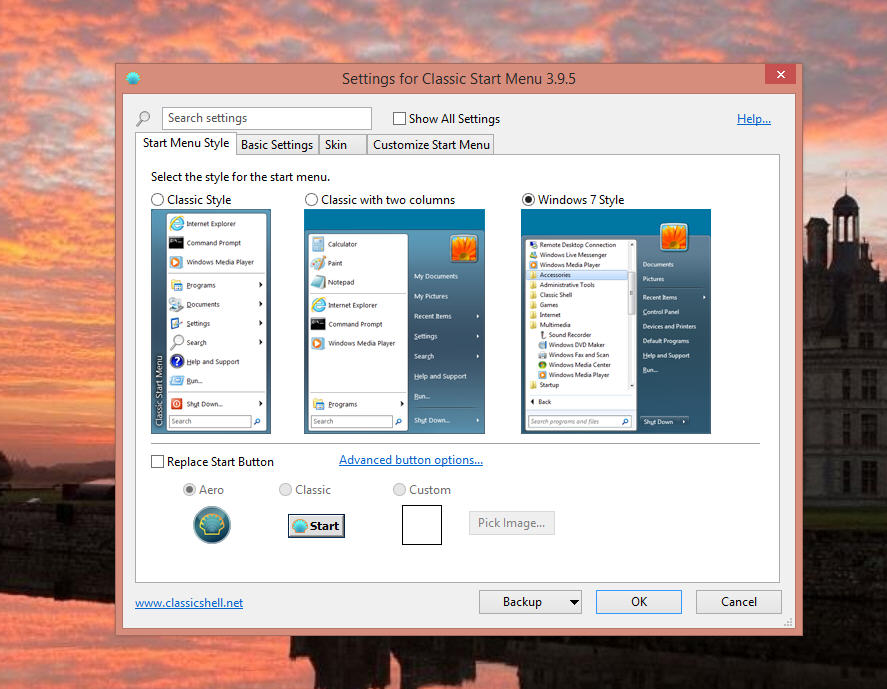
Once set up, clicking the Start button will open a menu just like in earlier versions of Windows, and you need never see the Modern UI again (although there’s an option to launch the Start screen at the top of the new Start menu).
If you want to revert back to the 8.1 Start screen at any point, you can just right-click the Start button and exit Classic Shell.
-

Why the haters are plain wrong about the beautiful new iPhone 5c
Publié: septembre 13, 2013, 11:12am CEST par Wayne Williams

As I write this, the ultra-new iPhone 5c has just become available to pre-order from the Apple Store, as well as from AT&T, Sprint, Verizon, and T-Mobile.
So I figured it was a good time to address the problem(s) a lot of people seem to have with Apple’s new polycarbonate plastic-bodied iPhone, and explain -- in simple terms -- why the haters are way off the mark, and why the 5c is actually a great device, and a clever move for Apple.
The biggest problem the 5c has is people think it’s something it isn’t. Before the phone was officially announced, there were rumors, information leaks and photos of the device all over the internet. Everyone knew what was coming. Apple was announcing a low-cost plastic bodied iPhone -- a device aimed at emerging markets and first time smartphone buyers. A device the masses could afford. An iPhone for everyone. The C in 5c stood for cheap.
Which was wrong, wrong and wrong. The C, if it truly stands for anything, stands for colorful. The hard-coated plastic body can be produced in bright colors. That’s primarily why it’s been used, not simply to reduce costs.
So when Apple announced the price of the new device -- from $99 for the 16GB model on a two year contract, or $549, unlocked and contract free -- people were shocked and up in arms. Apple shares dropped accordingly. The cheap iPhone wasn’t cheap enough.
But cheap enough for who? It’s certainly plenty cheap enough for Apple.
After all, since when does Apple do low cost anyway? The company makes premium products which it sells at a premium price that people for the most part are willing to pay. It’s a massively successful strategy -- why jeopardize that by wading into the low end of the market in the quest for a few more dollars which, frankly, it doesn’t really need, and eroding its own profit margins in the process? The iPhone 5 is a quality device, and switching to a polycarbonate plastic enclosure isn’t going to suddenly shave an absolute fortune off its price, and why would it?
Personally I think the pricing is spot on. The device is more affordable that the 5s, so it will appeal to people who can’t justify shelling out the extra for the flagship version, but it also leaves room for Apple to adjust the MSRP downwards if it needs to get buyers at home or in developing markets more interested. It’s much easier to lower the price of something when you need to drive sales, than raise the price of something in the quest for higher margins.
And let’s not forget an important detail. Everyone who is complaining about the price of the 5c, calling it a fail, or dumping stock because the device is not low-cost enough, is -- to put it bluntly -- an idiot. No one at the Cupertino, Calif.-based Corporation ever said it was making a budget iPhone. The media planted and watered that seed. Apple just introduced the device it was always going to introduce. The fact it wasn’t the cheap iPhone the media said it would be, is hardly Apple’s fault now is it?
All Things Bright and Beautiful
Let’s talk about that new case. Sure Apple isn’t the first company to make a phone available in bright colors -- the 5c has already been dubbed the iLumia by many -- but it’s an obvious move.
It’s partially a nod to the firm’s past, to the colorful iMacs of the late 1990s which helped save Apple, and the colorful iPods which followed. But it’s also a device which complements the colors and styling of iOS 7. I haven’t had the chance to see an iPhone 5c up close yet, but from the images I’ve studied I know how enticing a colorful iPhone rocking a colorful OS is going to look in an Apple Store.
The iPhone 5c and iOS 7 are designed to go hand in hand, with wallpaper to match the body color. If Jony Ive had decided to make iOS 7 all dark and moody I very much doubt Apple would have brought out the 5c.
Think Different
To understand the iPhone 5c properly, you need to banish any preconceptions you might have of it. The 5c is NOT intended as a budget phone, and never was. It is not cheap alternative to the iPhone 5s for developing markets, nor is it simply last year’s iPhone 5 in a plastic body.
It’s a new Apple iPhone in a range of striking colors priced exactly right. Buy it, or don’t buy it, but don't have a go at it for being something it isn’t and never was.
-

Smartphones to cannibalize tablets, but it's the PC getting eaten
Publié: septembre 12, 2013, 1:56pm CEST par Wayne Williams
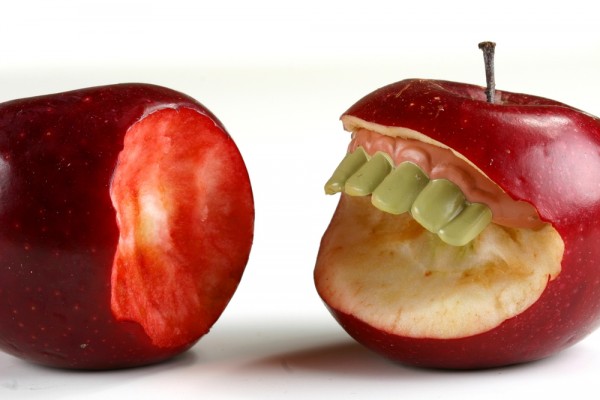
Tablets are where the growth is right now, with sales of touch devices eating away at the market share of traditional PCs. But that’s not the only cannibalization going on in the tech world. The iPad mini certainly impacted on sales of the standard-sized iPad upon launch. And with the line between tablets and smartphones becoming increasingly blurred, market analysis firm IDC predicts large-screen (5+ inch) smartphones will start to gnaw away at the smaller (7-8 inch) tablet market from 2014.
"The device world has seen several iterations of cannibalization impacting different categories, with the last few years focused on tablets cannibalizing PC sales," Bob O'Donnell, Program Vice President, Clients and Displays, observes. "Over the next 12-18 months, however, we believe the larger smartphones, commonly called 'phablets', will start to eat into the smaller-size tablet market, contributing to a slower growth rate for tablets".
IDC’s Worldwide Quarterly Smart Connected Device Tracker expects the smart connected device market (made up of PCs, tablets, and smartphones) to grow globally by 27.8 percent year over year in 2013, building on the impressive 30.3 percent growth witnessed in 2012. Predictably this growth will be powered by tablets and smartphones, with PC shipments dropping by 10 percent this year.
Four months ago IDC predicted tablets will be out-shipping PCs by 2015 and while the firm is still sticking to that time frame, it forecasts tablet shipments will surpass total PC shipments in the fourth quarter of 2013 -- presumably as a result of tablet manufacturers pumping out more product for the holiday season.
Looking forward, the firm says global smart device shipments will surpass two billion units by the end of 2015 with a market value of $735.1 billion. By 2017, PC shipments are expected to drop to 13 percent, while tablets and smartphones will contribute 16.5 percent and 70.5 percent respectively to the global market.
Tablet and smartphone growth will largely be fuelled by the proliferation of low cost devices.
"At a time when the smartphone and tablet markets are showing early signs of saturation, the emergence of lower-priced devices will be a game-changer," says Megha Saini, Research Analyst with IDC's Worldwide Quarterly Smart Connected Device Tracker. "Introducing new handsets and tablet devices at cheaper price points along with special initiatives like trade-in programs from Apple and BestBuy will accelerate the upgrade cycle and expand the total addressable market overnight".
Smart Connected Device Market by Product Category, Unit Shipments and Market Share, 2013 and 2017 (shipments in millions)
Product Category 2013 Unit Shipments
2013 Market Share
2017 Unit Shipments
2017 Market Share
2013—2017 Growth
Desktop PC 134.4
8.6%
123.11
5%
-8.4%
Portable PC 180.9
11.6%
196.6
8%
8.7%
Tablet 227.3
14.6%
406.8
16.5%
78.9%
Smartphone 1,013.2
65.1%
1,733.9
70.5%
71.1%
Total 1,556
100%
2,460.5
100%
58.1%
Source: IDC Worldwide Quarterly Smart Connected Device Tracker, September 11, 2013.
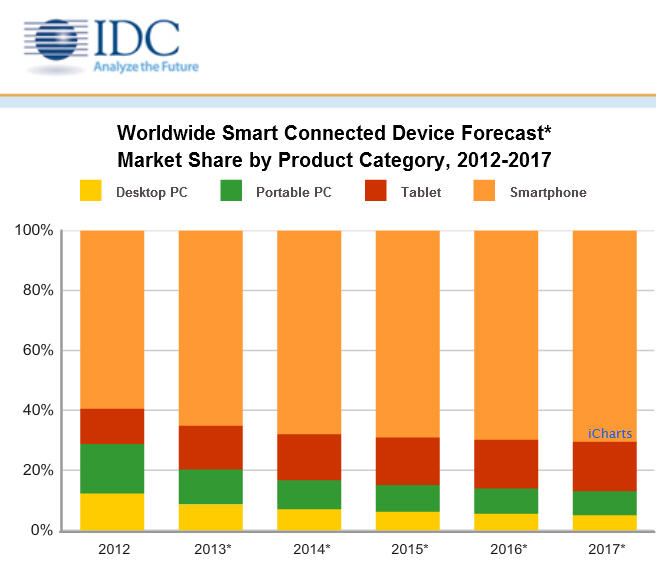
Photo Credit: Timothy R. Nichols /Shutterstock
-

Apple to release iOS 7 on September 18
Publié: septembre 10, 2013, 7:36pm CEST par Wayne Williams
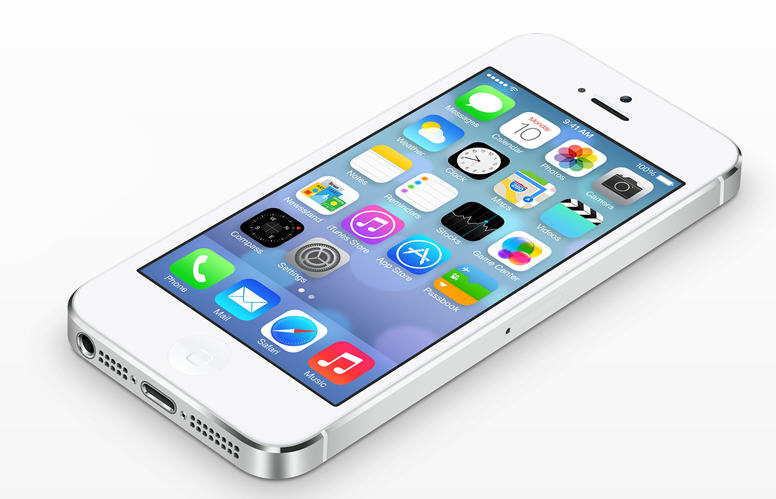
As you’ll no doubt be aware Apple is currently hosting an iPhone event at its Cupertino, Calif.-based home. Like all Apple events, proceedings started with an impressive figure -- Apple will ship its 700 millionth iOS device next month -- and then after a brief look at the free iTunes Festival, we got a recap of what the next version of Apple's mobile operating system has to offer us.
The Jony Ive designed iOS 7 has a flatter, functional design and the skeumorphism -- faux wooden bookshelves, green felt and the like -- is no more. The icons have been redesigned, the typeface changed, and there’s new pallet of colors. Siri has been massively improved too.
It’s the biggest change to the operating system since iOS first launched. Or as Craig Federighi, senior vice president of Software Engineering at Apple, claimed while demoing it: "Downloading iOS 7 is like getting an all-new device. One that's so much more useful and elegant than ever before".
We’ve all known iOS7 was coming, but what we didn’t know was exactly when and now we do. Apple will be pushing out the update on September 18 -- so just over a week away.
Will it be compatible with your iOS device? It depends how new it is. Apple says it will be available for iPhone 4 and later, iPad 2 and later, iPad mini, and 5th gen iPod touch.
-

Google celebrates the music of The Clash
Publié: septembre 10, 2013, 12:15pm CEST par Wayne Williams
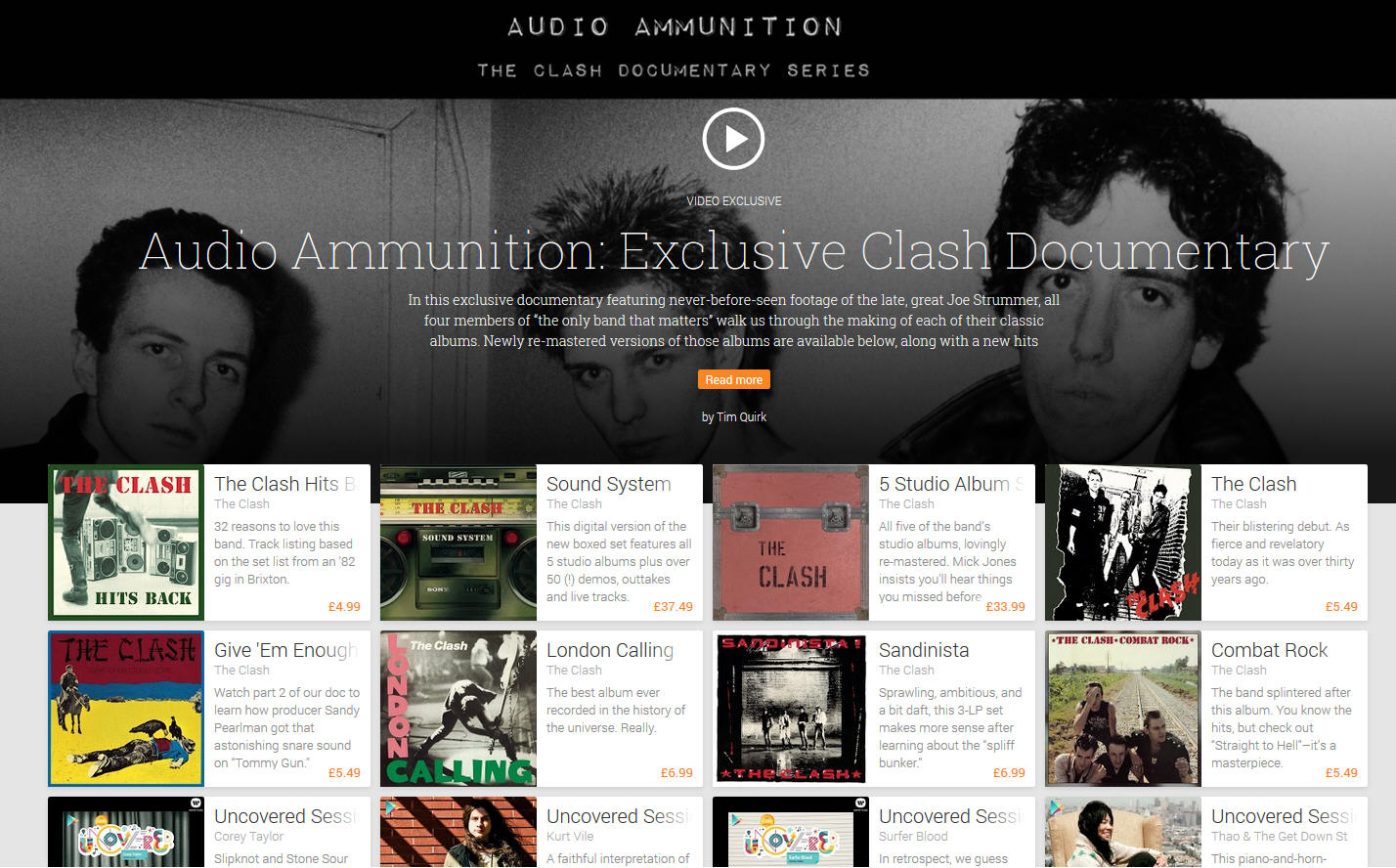
I once spent a fun evening drinking in an LA hotel bar with the Sex Pistols. It was the 90s and the iconic group had reformed for a series of lucrative gigs and were in the city for rehearsals. John Lydon was in excellent form, as always.
Despite being the best known of the seventies punk bands, The Sex Pistols were never my favorite group -- I always preferred The Clash (with The Damned close behind). I told Lydon this and he laughed and spat on the floor. He spent a lot of that evening spitting on the floor, and my shoes.
Unlike many of the bands around at the time that punk exploded in the UK, The Clash were a truly talented group and produced some excellent albums and singles which still hold up well today. Anthems such as London Calling, Rock the Casbah, and Should I Stay or Should I Go.
To celebrate the re-release of some of The Clash’s greatest music, Google has put together a free, five-part documentary on the band titled “Audio Ammunition”. It covers the writing, recording and reception of each of the group’s classic studio albums.
According to Google, "we wanted to celebrate their legacy and create something cool for their fans around the world. They handed over hours of unseen footage of the late Joe Strummer discussing the arc of the band’s career. And the Google Play team interviewed the rest of the members to get their perspective on what they accomplished and how they did it".
You can watch part one of the documentary on Google Play now (or embedded below) and the rest at Google Play's YouTube Channel. As well as offering five of The Clash’s newly released, digitally remastered albums for sale, Google Play also has four free cover versions available to download. These are London Calling by Corey Taylor (lead singer of Slipknot), Guns of Brixton by Kurt Vile, Spanish Bombs by Surfer Blood, and Train in Vain by Thao & The Get Down Stay Down.
-

Installing Windows 8.1 -- Easy, but potentially very time consuming
Publié: septembre 10, 2013, 9:54am CEST par Wayne Williams
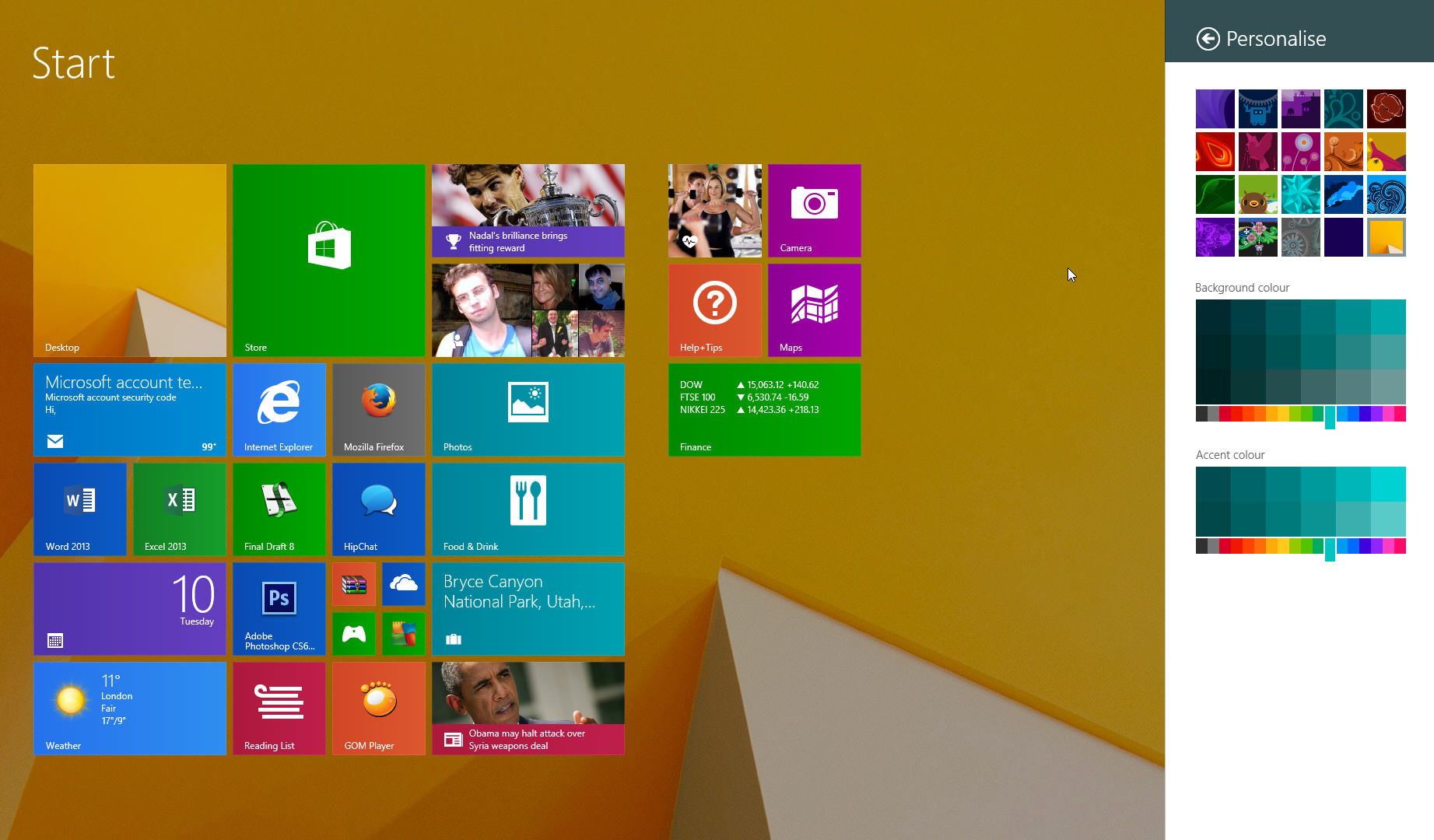
As soon as Microsoft announced it was making Windows 8.1 RTM available to IT professionals I logged into my MSDN account and started downloading the ISO for it. The size of the file varies depending on the edition you download -- approx. 3,537MB for the x64 version, and 2,643MB for the x86 release.
You can install Windows 8.1 from directly inside Windows 8/Windows 8.1 Preview. Just launch the setup.exe inside the ISO and windows will prepare the files and launch the installer. It’s all plain sailing at this point.
The first question you’ll encounter will be whether you want the setup to download and install updates or not. Select the former option (it won't slow things down) and click Next. Setup will check for updates, check your PC and then ask for the product key. Type this in. The key's validity will be checked immediately without your having to hit enter, and Windows 8.1 will be activated.
Click Next and accept the license terms. You’ll now be presented with the important choice. You can opt to keep "Windows settings, personal files and applications", "Keep personal files only", or keep "Nothing". The first choice is a no brainer, but isn’t available if you’ve already installed the Windows 8.1 Preview. In that case you’ll only be able to choose between "Keep personal files only", or keep "Nothing".
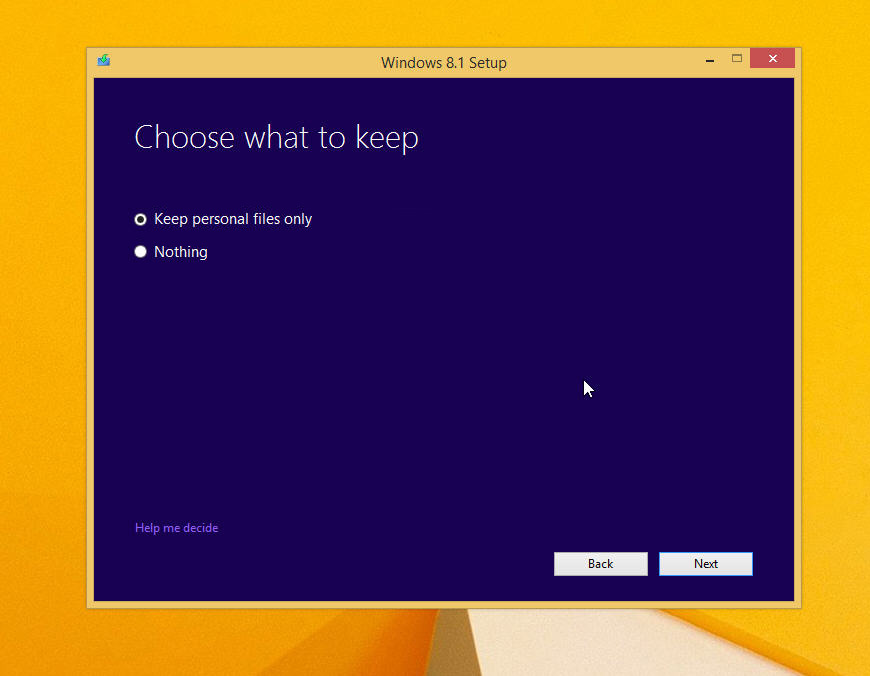 Select the option you require, and setup will go through the install process, restarting as required and when it completes you’ll be invited to customize the OS, log into your Windows account and so on.
Select the option you require, and setup will go through the install process, restarting as required and when it completes you’ll be invited to customize the OS, log into your Windows account and so on.It’s once all that’s done that the hard work begins.
The one downside of installing RTM over the Preview is it wipes all your applications and installed programs. So that meant I had to spend ages reinstalling everything. I’m not a big apps user so I didn’t appreciate how much time I was going to need to devote to getting Windows back to how I had it. I had to install Office 2013, Photoshop, AVG, WinRAR and numerous other programs. I also had to reinstall Chrome and Firefox. If you’re not an Internet Explorer user it’s important to make sure your bookmarks and passwords are backed up and/or synched before you install Windows 8.1 as they’ll be wiped along with the browsers. It’s not the end of the world if you don’t as you can always grab the required files from your old profile.
I’d configured Windows 8.1 Preview to bypass the login and lock screens and boot straight to the desktop. I’d also chosen to have the Apps screen as the default view in place of the Start screen. Windows 8.1 RTM didn’t like that idea and reset everything, so I had to spend a couple of minutes putting everything back how I like it.
Despite the time spent on getting everything set up, the upgrade went very smoothly and I’m really enjoying using the finished version of Windows 8.1. It won’t win over the vast majority of users who hate Windows 8, but it’s a huge improvement over the first version of the tiled OS, and Microsoft has done a really good job of fixing the problems and improving the weaker areas.
-

Developers and IT professionals can download Windows 8.1 NOW
Publié: septembre 9, 2013, 8:15pm CEST par Wayne Williams
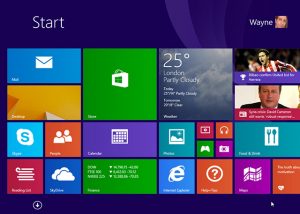 Two weeks ago I wrote a piece called Microsoft, if you want apps for Windows 8.1, don’t piss off developers in which I expressed disbelief that Microsoft wasn’t making the RTM build of Windows 8.1 available to app creators. Microsoft’s plan was to only release the RTM to hardware makers, which seemed a crazy decision.
Two weeks ago I wrote a piece called Microsoft, if you want apps for Windows 8.1, don’t piss off developers in which I expressed disbelief that Microsoft wasn’t making the RTM build of Windows 8.1 available to app creators. Microsoft’s plan was to only release the RTM to hardware makers, which seemed a crazy decision.Fortunately, Microsoft has once again listened to the complaints and performed one of its frequent U-turns, announcing that developers and IT professionals will now be able to get their hands on the Windows 8.1 and Windows 8.1 Pro RTM builds early -- from today in fact.
If you have an MSDN or TechNet subscription you can download the RTM now. The Windows Server 2012 R2 RTM builds are available too, and developers can also get their hands on the Visual Studio 2013 Release Candidate.
Windows 8.1 Enterprise RTM build will be made available later this month.
In a blog post, Microsoft's Chief Evangelist Steve Guggenheimer, explains the change of heart, saying:
We heard from you that our decision to not initially release Windows 8.1 or Windows Server 2012 R2 RTM bits was a big challenge for our developer partners as they’re readying new Windows 8.1 apps and for IT professionals who are preparing for Windows 8.1 deployments. We’ve listened, we value your partnership, and we are adjusting based on your feedback. As we refine our delivery schedules for a more rapid release cadence, we are working on the best way to support early releases to the various audiences within our ecosystem.
It’s great news for developers and IT professionals, and a smart move on Microsoft’s behalf. I’ve already admitted my love for Windows 8.1 and am excitedly downloading the Windows 8.1 RTM right now.
-

Microsoft launches Xbox Music apps for iOS and Android, introduces FREE web streaming
Publié: septembre 9, 2013, 9:22am CEST par Wayne Williams
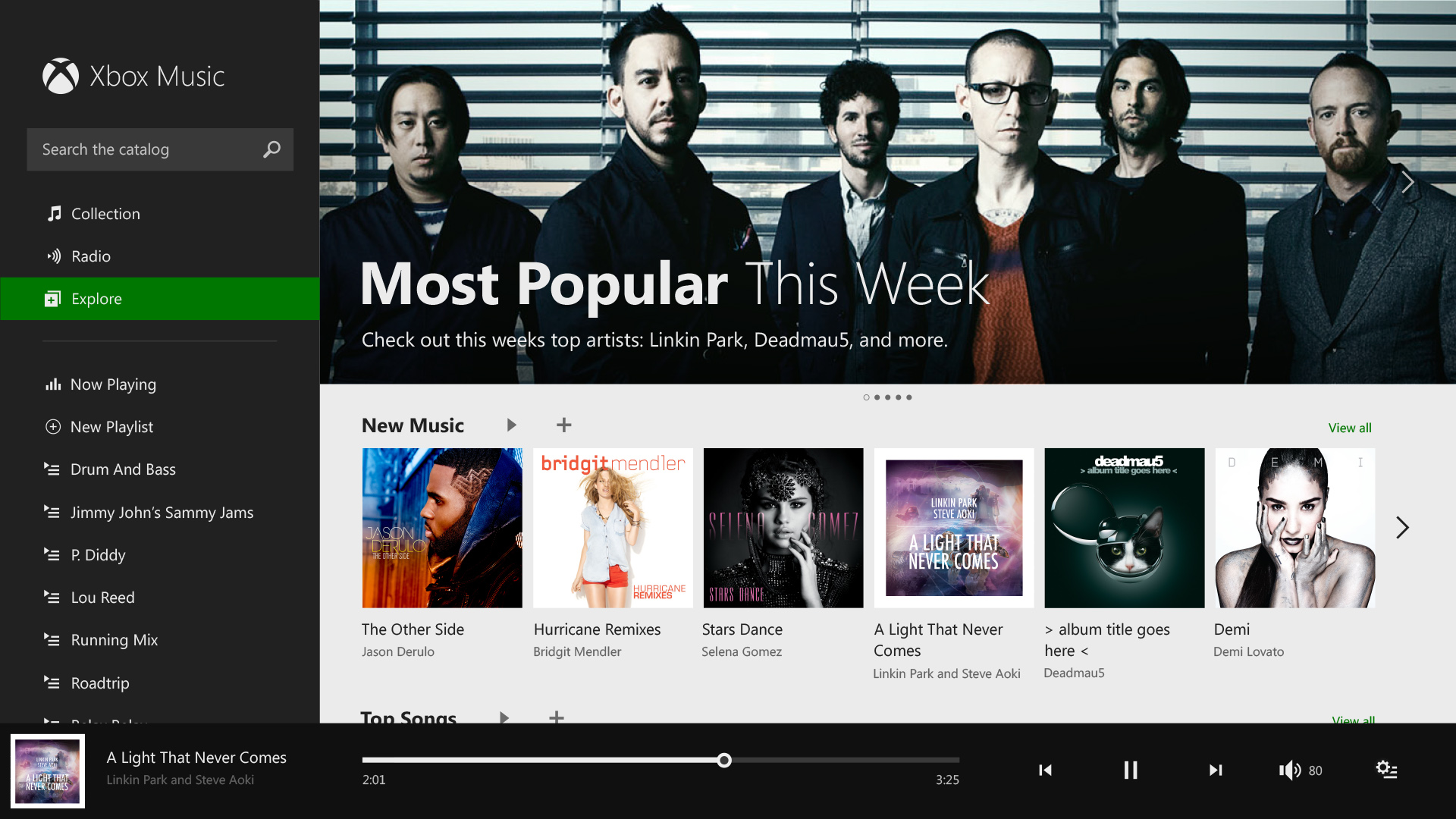
Nearly a year after it debuted Xbox Music, Microsoft has introduced iOS and Android apps for its impressive music service, and sent out a clear warning to the likes of Spotify with the introduction of free web streaming.
iOS and Android users with an Xbox Music Pass can now enjoy unlimited access to 30 million songs for $9.99 per month or $99.99 per year. When you add a song to your music library on Xbox, it will be instantly available on the mobile device.
In the coming months the new apps will gain an offline mode that will let you save music to your device for playback in those times when you find yourself in the back of beyond without an Internet or data connection.
The software giant has also added free streaming to the Xbox Music Web player at http://music.xbox.com (as well as through the Windows 8 Xbox Music app). Initially you’ll be able to enjoy unlimited listening, but Microsoft plans to restrict the free hours of streaming after six months -- it didn’t go into details of how strict (or otherwise) this cap will be. Anyone with an Xbox Music Pass will be able to continue to enjoy unlimited streaming, however.
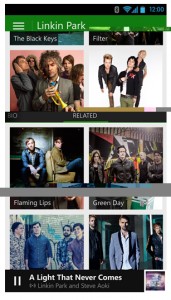 The Xbox Music expansion doesn’t end there. Microsoft will be adding Radio to its web player in the coming months, and a Web Playlist feature -- which scans tracks on a web page and then creates a custom playlist inside Xbox Music -- will be added to Windows 8 on October 17, rolling out alongside Windows 8.1.
The Xbox Music expansion doesn’t end there. Microsoft will be adding Radio to its web player in the coming months, and a Web Playlist feature -- which scans tracks on a web page and then creates a custom playlist inside Xbox Music -- will be added to Windows 8 on October 17, rolling out alongside Windows 8.1.Jerry Johnson, general manager of Xbox Music said: "Xbox Music now, more than ever, powers music experiences between Windows 8, Xbox, Windows Phone, and now iOS, Android and the Web. We’re also excited to connect artists with their fans on the most anticipated consumer product of the year when Xbox One launches Nov. 22".
If you’re not already using Xbox Music will this new announcement inspire you to give the service a try? Are you excited by the addition of free web streaming? Let me know in the comments below.
-

Is touch contributing to the death of the PC?
Publié: septembre 6, 2013, 3:26pm CEST par Wayne Williams

HP yesterday revealed two reclining touchscreen PCs and in the accompanying press release Mike Nash, vice president, Product Management, Consumer PCs and Consumer Solutions, HP said: "Customers have told us that they want touch on their PCs", but do they? Really? Because the list of bestselling PCs on Amazon tells a different story. That suggests customers don’t want touch on their PCs.
According to the latest figures from NetMarketShare, just under eight percent of PC users are on Windows 8. What percentage of those use touch? I don’t know, but I could hazard a guess of no more than around 30 percent.
The HP ENVY Recline systems are essentially touchscreen PCs that you can reconfigure so the screen lies nearly flat and can be used like a tablet. Without actually having the benefits of a tablet -- the lightweight portability for example. They can hang off your desk and dangle near your lap too.
I read the press release, I looked at the pictures, and I failed utterly to understand who would want one. It’s like HP realized that sticking touch on a standard desktop PC has limited appeal to the average consumer -- occasionally swiping your screen is fine, doing it all the time is just uncomfortable -- so set out to solve the problem. A problem it had created by adding touch in the first place. And its solution was to let users lie the screen down.
Lenovo’s Yoga PCs are clever, and approach touch by providing consumers with multiple ways of using the devices. I personally haven’t used one for any length of time, but I’ve played around with one in a store, and I liked it. I can see its appeal.
But adding touch to a desktop computer, and then trying to make the inclusion attractive with some weird gimmick? No, no, no.
I’ve compared touch on computers with 3D in movies before and I still view it that way. Avatar was a great 3D movie, but many of the 3D films that followed it -- which were essentially 2D movies with depth bolted on so the cinemas could charge more -- were bloody awful. It’s the same thing with touchscreen. Touch on tablets is essential. Touch on laptops can be useful. Touch on desktops is usually nothing more than a silly gimmick.
I’m not anti-touch -- far from it. The technology definitely has its place, particularly if you’re an app-aholic Windows 8 user. But touch increases the cost of PCs by a significant amount. So suddenly shiny new fast computers which would be pretty affordable, are now beyond the budget of a lot of people. Plus you’ve got the additional costs caused by manufacturers trying to make those touchscreens more comfortable to use. A rectangular box full of PC parts will always be much cheaper than an oddly shaped system designed around a reclining monitor.
In a quest to get people to go and see films at the cinema, movie studios put out 3D films and charged more. But people preferred to go see the 2D versions. In a similar quest to get people to buy new PCs, manufacturers are adding touch where it’s not needed, and pricing those products way beyond what people want to pay.
Asking people to pay an inflated price for a feature they don’t actually want? Well, that’s not going to stop the decline of the PC now is it?
Photo Credit: Deklofenak/Shutterstock
-

New infographic shows the history of mobile technology in business
Publié: août 30, 2013, 3:12pm CEST par Wayne Williams
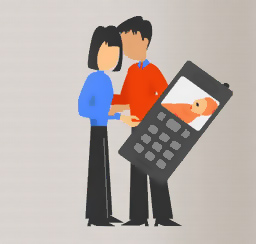 Mobile technology moves pretty fast these days. Think back ten years and things were very different. Most people had basic mobile phones with physical button keypads, and despite Microsoft’s attempts to bring tablets to the masses it was Apple launching the iPad in 2010 that finally made it happen.
Mobile technology moves pretty fast these days. Think back ten years and things were very different. Most people had basic mobile phones with physical button keypads, and despite Microsoft’s attempts to bring tablets to the masses it was Apple launching the iPad in 2010 that finally made it happen.The past decade has seen some amazing innovations, and changed the face of business. According to a 2013 AT&T Technology Poll, 98 percent of small businesses use wireless or mobile technology in their daily operations and 66 percent of small businesses have stated that it would be a major challenge to operate their business without such technology.
Mobile payment processing company SwitchPay has created an infographic titled "The History of Mobile Technology in Business" which details the major milestones in mobile communication.
Highlights include the very first mobile call in 1946, the first telephone call from a mobile phone in 1973, the launch of the first commercial 3G network in 2001, BlackBerry (or RIM as it was) launching its first smartphone in 2003, and of course the Apple iPhone in 2007.
It’s interesting to see how much has happened in the past decade and makes you wonder what the next ten years will bring. Will wearable tech be the next big milestone?

-

Microsoft, if you want apps for Windows 8.1, don’t piss off developers
Publié: août 28, 2013, 3:25pm CEST par Wayne Williams

Microsoft needs better Windows 8 apps, and in greater numbers, but, at times, it seems at a loss on how to get them. The company has introduced various initiatives, but then for reasons that are hard to fathom, does its best to hamper developers.
In a blog post yesterday, following the announcement of Windows 8.1 hitting the RTM milestone, the Windows Apps Team put out a call to developers to get their apps ready for the Windows 8.1 launch. It went down like a lead balloon with app makers asking exactly how they're supposed to do this without early access to Windows 8.1 RTM.
In the blog post Microsoft says developers "can begin publishing apps built for Windows 8.1 starting on the day of General Availability" and points them in the direction of various resources. But what developers really want, is a finished, less buggy version of Windows 8.1 to work with in advance.
General availability has been confirmed for October 18th, and this is the first time anyone not a hardware partner will get to install and use it (unless they pirate the RTM, of course). So what Microsoft is essentially saying to developers is to spend two months coding or adapting apps and hope they work.
The comments below the post sum up the frustration this news has stirred up in the developer community. Brianjsw says:
In a world inhabited by pink unicorns and pixie dust, the advice in this post would be sufficient. However we live in the real world last time I looked out the window. In the real world, developers must have access to the RTM bits before GA. The fact that Microsoft no longer seems to understand this truly frightens me.
Sentiments Robert Beaubien echoes:
I agree. The advice to use a pre-release OS and pre-release development environment to update production software is disturbing to say the least.
Slaythoven makes his dissatisfaction very clear:
So you want me to update my official production code done with VS 2012 Ultimate & Windows 8 GA with VS 2013 PREVIEW and Windows 8.1 PREVIEW? When Windows 8.1 RTM is sitting right there? Does RTM mean you've finalized your code and it's ready for release sans OEM drivers? Why, out of the clear blue, have you decided to not release early to MSDN? Bug fixes & continual code updates aren't a good enough reason due to the fact that there's an excellent tool at delivering those bits named "Windows Update". I'm not saying release it today, I'm saying Win8.1 RTM should be released to MSDN & TechNet AT LEAST by September 15th at the latest.
And it's hard to disagree with wdeguara's comment:
Microsoft's decision to withhold Windows 8.1 RTM to developers and volume license customers is a significant mistake. It further discourages developers and enterprises to adopt its new operating system by introducing unnecessary delays and roadblocks to readiness activities. It really defies logic.
Quality and quantity of apps remains one of Windows 8's biggest issues, and if Microsoft is ever to overcome this hurdle it really needs to be thinking developers, developers, developers.
Photo Credit: Djomas/Shutterstock
-

Automate login and bypass the lock and Start screens in Windows 8.1
Publié: août 27, 2013, 2:10pm CEST par Wayne Williams
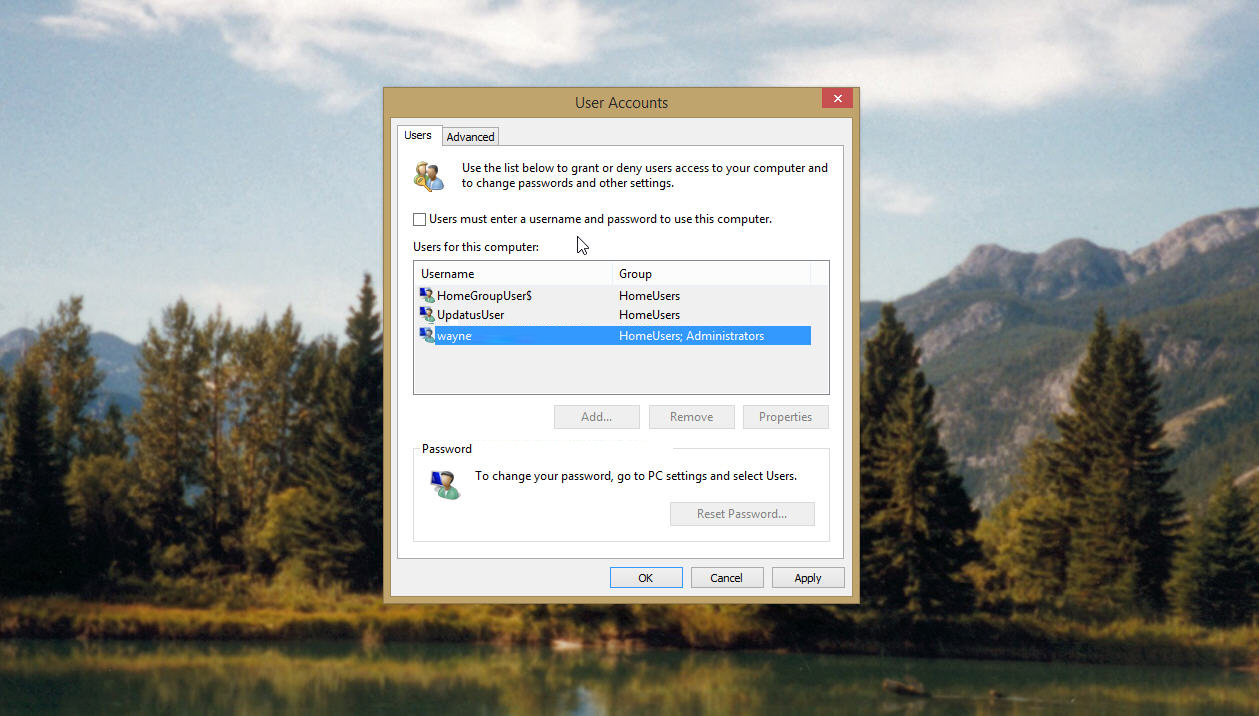
Windows 8.1 is a huge improvement over Windows 8. Once you've spent any time in the preview (or one of the leaked builds) you'll find it impossible to go back to the obviously half-baked original.
But the default setup still has some annoyances that get in the way and prevent you from just booting up your PC and using Windows. For starters there's the lock screen to get through -- a delaying stage which serves little purpose in a home environment. Then you have to enter your password and log to in your Microsoft account, and finally, once you've cleared those steps, there's the Modern UI to go through on your way to the desktop. Fortunately you can configure Windows 8.1 to skip all of that nonsense.
It’s all very easy to do. From the Start screen type "run". Click on Run and type "netplwiz". OK that and highlight your account. Uncheck "Users must enter a username and password to use this computer". Click Apply. Then enter your password twice. Click OK.
From the Start screen type "taskbar" and select Taskbar and Navigation. Click the Navigation tab and tick "Go to the desktop instead of Start when I sign in". You can also tick the "Show the Apps view automatically when I go to Start" if you’re not that interested in the Modern UI Start screen.
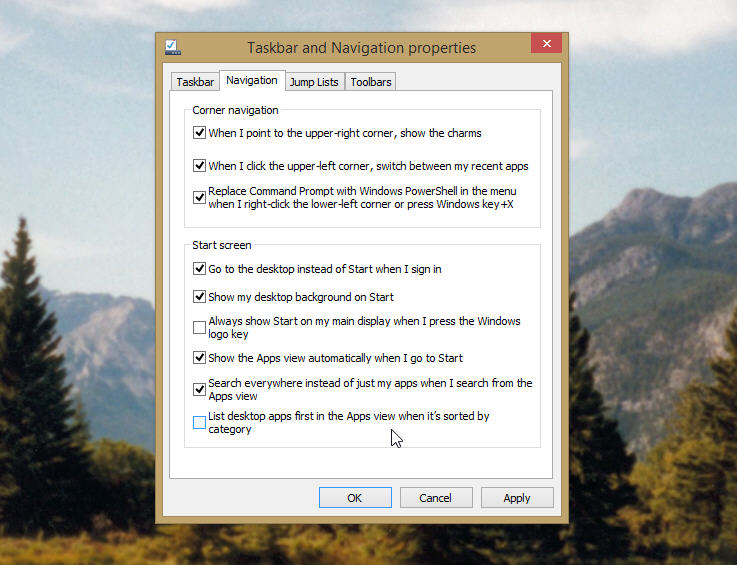
Restart your PC and when Windows loads it will automatically log you in and take you straight to the desktop. Easy.
-

Newark element14 launches a heatsink for the Raspberry Pi
Publié: août 26, 2013, 6:58pm CEST par Wayne Williams

I’ve personally never had any great problems with my Raspberry Pi overheating, but then I work in a cool office and rarely push the uncased credit card-sized device to its limits.
If you do have problems with the ARM GNU/Linux computer getting a little too warm, the good news is you can now buy a heatsink for it.
The new product comes with a self-adhesive thermal layer offering thermal resistance of 25°C/W, and is designed specifically for the Pi’s CPU.
It offers simple, passive cooling, with no need for noisy fans, and has a low profile (13mm x 13mm x 10mm) so will fit inside most cases.
The new heatsink is available now to buy from Newark element14 and MCM in North America, Farnell element14 in Europe, CPC in the UK and Ireland and element14 in Asia Pacific. It's priced at $7.49, which my colleague Brian Fagioli points out is 21 percent of the cost of the device it's cooling...
-

THIS is how Microsoft should advertise Windows 8
Publié: août 26, 2013, 1:04pm CEST par Wayne Williams
While every armchair tech pundit and analyst pontificates on Steve Ballmer’s retirement bombshell and speculates on who Microsoft’s next CEO might be and what the future holds for the tech giant, I’d like to take a moment to just enjoy this video of Steve selling Windows 1.0.
Sure, there are many amusing videos of the departing CEO on the web -- including his famous monkey boy dance, this one where he disses the iPhone, and of course developers, developers, developers etc. But it’s Steve in full used car salesman mode that I really like.
Selling Windows 1.0’s "advanced operating environment" Steve Ballmer rattles off the benefits -- you can paste a Miami Vice Ferrari picture into Windows Write, there’s Windows Paint, MS-DOS Executive, an appointment calendar, a card file, a notepad, a clock, a control panel, a terminal, print spooler, RAM driver and -- most importantly of all -- Reversi. It’s a fun watch, as indeed is the follow up where Steve sells Windows XP.
Sure they were cheesy videos and arguably of their time, but they at least sold some of the benefits of the product unlike, say, the original Surface adverts with dancers and clickable covers.
Maybe before he leaves, Steve Ballmer could do one more commercial in which he over-hypes Windows 8 and/or Surface. For old time's sake.
How much did you guess for Surface RT? $500? A $1000? Even more? No! It’s just $349.99! Get it now!
-

Microsoft CEO Steve Ballmer to retire within a year
Publié: août 23, 2013, 4:10pm CEST par Wayne Williams
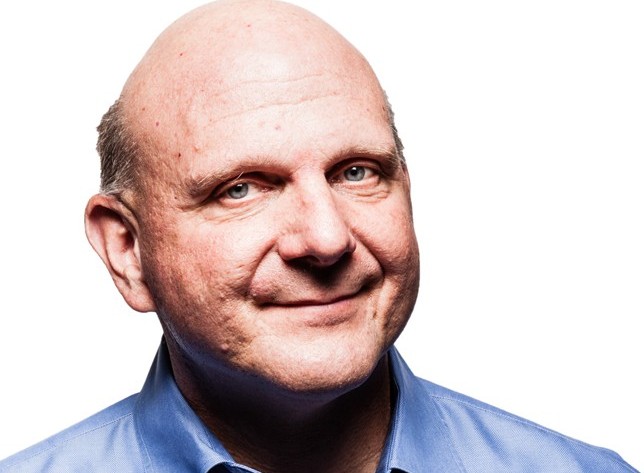
There will be plenty of people thrilled by the news that Microsoft’s long-term CEO is planning on standing down. After all, Microsoft hasn’t exactly had the greatest success with Windows 8 and Surface in recent months, and maybe it is time for a new hand on the tiller as the tech giant continues to head off into new and at times uncharted waters as a devices and services company.
Even so, the news is a shock. In a press release Microsoft says "Steve Ballmer has decided to retire as CEO within the next 12 months, upon the completion of a process to choose his successor". That doesn't mean he'll be around for another year, it simply means he'll be in charge until a successor is found, which could be a matter of months.
In an internal memo sent to employees, Steve Ballmer said:
I am writing to let you know that I will retire as CEO of Microsoft within the next 12 months, after a successor is chosen. There is never a perfect time for this type of transition, but now is the right time. My original thoughts on timing would have had my retirement happen in the middle of our transformation to a devices and services company focused on empowering customers in the activities they value most. We need a CEO who will be here longer term for this new direction. You can read the press release on Microsoft News Center.
This is a time of important transformation for Microsoft. Our new Senior Leadership team is amazing. The strategy we have generated is first class. Our new organization, which is centered on functions and engineering areas, is right for the opportunities and challenges ahead.
Microsoft is an amazing place. I love this company. I love the way we helped invent and popularize computing and the PC. I love the bigness and boldness of our bets. I love our people and their talent and our willingness to accept and embrace their range of capabilities, including their quirks. I love the way we embrace and work with other companies to change the world and succeed together. I love the breadth and diversity of our customers, from consumer to enterprise, across industries, countries, and people of all backgrounds and age groups.
I am proud of what we have achieved. We have grown from $7.5 million to nearly $78 billion since I joined Microsoft, and we have grown from employing just over 30 people to almost 100,000. I feel good about playing a role in that success and having committed 100 percent emotionally all the way. We have more than 1 billion users and earn a great profit for our shareholders. We have delivered more profit and cash return to shareholders than virtually any other company in history.
I am excited by our mission of empowering the world and believe in our future success. I cherish my Microsoft ownership, and look forward to continuing as one of Microsoft’s largest owners.
This is an emotional and difficult thing for me to do. I take this step in the best interests of the company I love; it is the thing outside of my family and closest friends that matters to me most.
Microsoft has all its best days ahead. Know you are part of the best team in the industry and have the right technology assets. We cannot and will not miss a beat in these transitions. I am focused and driving hard and know I can count on all of you to do the same. Let’s do ourselves proud.
The Board of Directors has appointed a special committee to direct the process which will be chaired by John Thompson, the board’s lead independent director, and include Bill Gates, who -- despite the wishes of many is not going to be doing a Steve Jobs and returning to lead Microsoft to greater glories, sadly.
"As a member of the succession planning committee, I’ll work closely with the other members of the board to identify a great new CEO," Gates says, adding, "We’re fortunate to have Steve in his role until the new CEO assumes these duties".
The committee will be working with recruiting firm Heidrick & Struggles International and will consider both external and internal candidates.
What do you think of the news? Exciting times ahead for Microsoft, or a worrying development?
-

Ho Ho Ho! Fedora 20 could be called 'Santa Claus' (or 'Cherry Ice Cream')
Publié: août 23, 2013, 12:09pm CEST par Wayne Williams
 A month ago my colleague Brian Fagioli complained that childish names were undermining Linux. He singled out Fedora 18 -- "Spherical Cow", and Fedora 19 -- "Schrödinger's Cat", as prime examples of the problem.
A month ago my colleague Brian Fagioli complained that childish names were undermining Linux. He singled out Fedora 18 -- "Spherical Cow", and Fedora 19 -- "Schrödinger's Cat", as prime examples of the problem.Fedora contributors are currently voting on the name for Fedora 20, and Brian will no doubt be lobbying hard for fan favorite "Santa Claus", although "Cherry Ice Cream" and "Superego" both also have a shot of being picked as the next release name.
Voters, who need to be Fedora contributors and be in at least one non-CLA group, can pick their favorites from a shortlist of eight put forward by the Fedora community.
Each suggestion must have some link with the previous name, although this is often incredibly tenuous.
This is the list, and the reason behind the name.
- "Cherry Ice Cream" -- Schrödinger's Cat is food [for the mind] and so is cherry ice cream [for the soul].
- "Châteaubriand" -- Like Schrödinger's Cat, this an edible object with thirteen characters.
- "eigenstate" -- Schrödinger's Cat is a theoretical physics concept, and so is eigenstate.
- "Félicette" -- Schrödinger's Cat is an animal of science, so is Félicette, the first cat in space.
- "Heisenbug" -- Schrödinger's Cat is a paradox where the object changes state when studied, and so is a Heisenbug.
- "Österreich" -- Schrödinger's Cat has an o umlaut, so does Österreich.
- "Santa Claus" -- Schrödinger's Cat does not exist (or exists, who knows), like Santa Claus.
- "Superego" -- Schrödinger's Cat is a theoretical concept from a Vienna native, as is the superego.
Some interesting ones there, though nothing to rival "Beefy Miracle" (Fedora 17). Past favorites of mine which were suggested but never even shortlisted include "Glados Cake" (Fedora 20) "Elastic Horses" (Fedora 19) and "Joey Joe Joe Jr. Shabadoo" (Fedora 18).
Which name would get your vote? (Feel free to suggest alternatives).
Image Credit: Aleksangel/Shutterstock
-

Ubuntu Edge smartphone falls far short of its $32 million funding target
Publié: août 22, 2013, 11:21am CEST par Wayne Williams
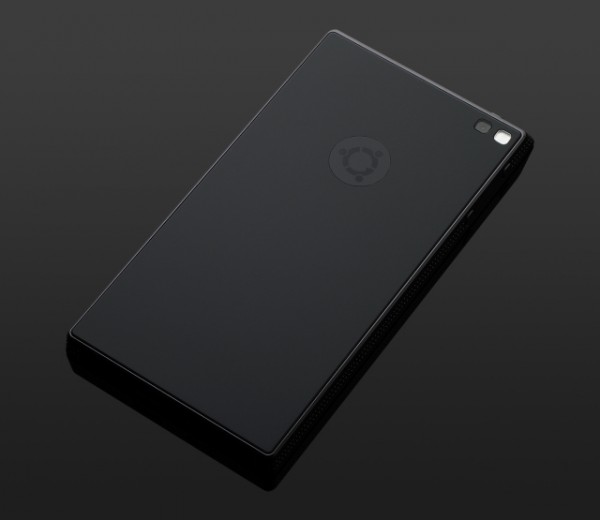 When Canonical launched its crowdfunded Ubuntu Edge campaign on Indiegogo, few people expected it to succeed. Building a "smartphone and desktop PC in one state-of-the-art device" was a noble and ambitious aim, but seeking $32 million to do it meant the project had little chance of victory.
When Canonical launched its crowdfunded Ubuntu Edge campaign on Indiegogo, few people expected it to succeed. Building a "smartphone and desktop PC in one state-of-the-art device" was a noble and ambitious aim, but seeking $32 million to do it meant the project had little chance of victory.Before Ubuntu Edge, the most funding a single project had raised on Indiegogo was $1,665,380, for a Tricorder-style medical scanner. Rival Kickstarter’s record was $10,266,845 for the Pebble smartwatch. Ubuntu Edge did manage to eclipse both, which was an impressive achievement in itself.
By the end of the campaign, which came to a conclusion at 11:59pm PT yesterday, Ubuntu Edge had raised $12,809,906, including a sizeable $80,000 contribution from Bloomberg. It was a crowdfunding record, but far short of the figure required to turn the project into reality.
As it was an all or nothing target, Canonical will now need to begin the process of returning the money to contributors.
Following the end of the campaign Canonical founder Mark Shuttleworth posted the following on Ubuntu Edge’s Indiegogo page:
So ends a crazy month. We’ve broken records, we’ve been written and talked about across the world, we’ve worn out our F5 keys, and we’ve learned a lot of invaluable lessons about crowdfunding. Our bold campaign to build a visionary new device ultimately fell short, but we can take away so many positives.
We raised $12,809,906, making the Edge the world’s biggest ever fixed crowdfunding campaign. Let’s not lose sight of what an achievement that is. Close to 20,000 people believed in our vision enough to contribute hundreds of dollars for a phone months in advance, just to help make it happen. It wasn’t just individuals, either: Bloomberg LP gave $80,000 and several smaller businesses contributed $7,000 each. Thank you all for getting behind us.
Then there’s the Ubuntu community. Many of you gave your time as well as money, organizing your own mailing lists, social media strategies and online ads, and successfully reaching out to your local media. We even saw entire sites created to gather information and help promote the Edge.
We’ll be contacting our biggest referrers personally.
Most importantly, the big winner from this campaign is Ubuntu. While we passionately wanted to build the Edge to showcase Ubuntu on phones, the support and attention it received will still be a huge boost as other Ubuntu phones start to arrive in 2014. Thousands of you clearly want to own an Ubuntu phone and believe in our vision of convergence, and rest assured you won’t have much longer to wait.
All of the support and publicity has continued to drive our discussions with some major manufacturers, and we have many of the world’s biggest mobile networks already signed up to the Ubuntu Carrier Advisory Group. They’ll have been watching this global discussion of Ubuntu and the need for innovation very closely indeed. Watch this space!
As for crowdfunding, we believe it’s a great way to give consumers a voice and to push for more innovation and transparency in the mobile industry. And who knows, perhaps one day we’ll take everything we’ve learned from this campaign -- achievements and mistakes -- and try it all over again.
This clearly isn’t the end for the Ubuntu Edge. By setting the target so high, Canonical all but guaranteed the campaign would fail, but in the process the London-based developer managed to achieve what I think was probably its real aim all along -- to get publicity, to show demand and get partners interested. The Indiegogo campaign might have been unsuccessful, but it’s what happens from now that really matters.
-

Google Helpouts let you get -- or offer -- video guidance on any topic
Publié: août 21, 2013, 12:19pm CEST par Wayne Williams
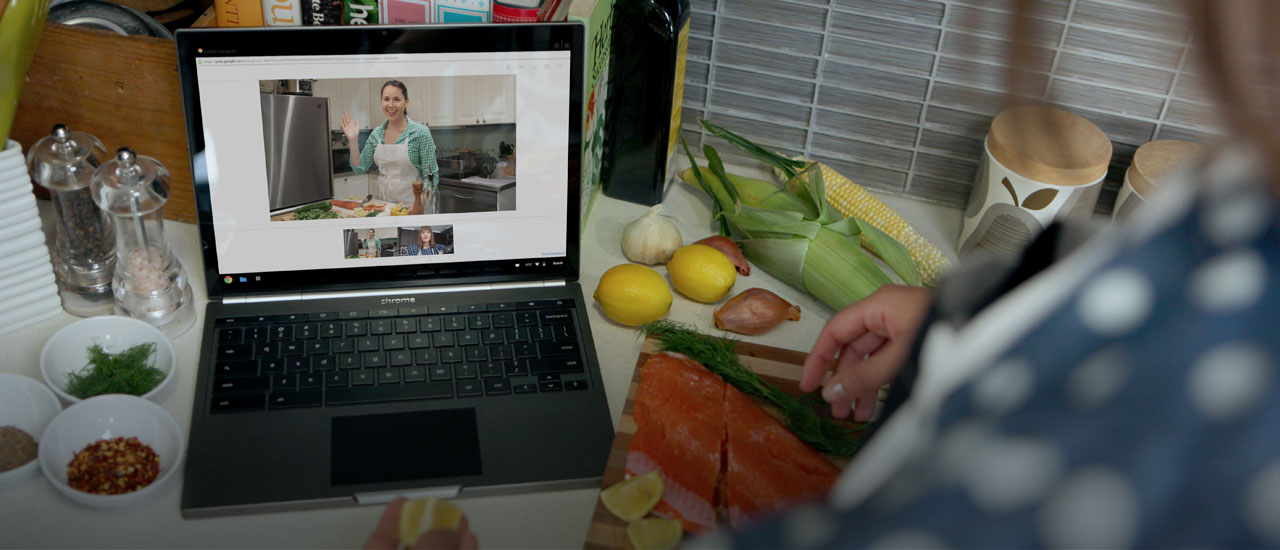
Google is testing a new Hangout-based feature which will allow experts to offer video tips and advice. So if your computer isn’t working, you’re looking for effective ways to get fit, or you’re not sure when’s the best time of year to prune a fruit tree, you can go online and ask for help.
According to Google, “Helpouts is a new way to connect people who need help with people who can give help, over live video, anytime, anywhere”. Topics which will be covered include Arts and Music, Computers and Electronics, Cooking, Education, Fashion and Beauty, Fitness and Nutrition, Health and Counseling, and Home and Garden.
Helpouts is at the sign-up phase at the moment. Register your interest and Google will inform you when the service goes live. You can also put yourself forward as an expert able to offer advice.
Google says “If you’re a professional or an expert in a particular area, share your knowledge with people who want to learn from you by giving a Helpout. Scheduling is simple and handled right from Helpouts. You can allow customers to schedule a session based on your availability. Since Helpouts are hosted via Hangouts video calls, you’re not tied to an office and you can connect with people around the world”.
Providers can offer Helpouts for free, or charge for a session, with payment going through Google Wallet. Google will take a 20 percent cut of your fees.
Sounds interesting to me. What do you think?
-

Gameloft bringing more games to Windows Phone 8 and Windows 8
Publié: août 20, 2013, 8:08pm CEST par Wayne Williams

I’ve played many a Gameloft game on my iPad (and other iOS devices), and although the company now likes to focus on Freemium titles packed with ridiculous in-app purchases, it is still a name synonymous with quality gaming.
Which is why it’s great news for Windows 8 and Windows Phone 8 devotees that the company plans to bring 15 of its new games to both of those platforms over the next twelve months, starting with Asphalt 8: Airborne and Dungeon Hunter 4 this fall.
Announcing the move, Steve Guggenheimer, corporate vice president of Developer and Platform Evangelism, Microsoft says, "We’re thrilled to work with a gaming industry leader such as Gameloft to deliver top casual and core titles to our customers this holiday. We strive to make Windows 8 and Windows Phone 8 the best platform for gaming. With top gaming companies such as Gameloft investing in the platform, it is evident that there is no better time for game developers and gamers alike to choose Windows".
While there’s no word on the full list of Gameloft games coming to Microsoft’s tiled operating systems, titles confirmed to arrive by the end of the year include the previously mentioned Asphalt 8: Airborne and Dungeon Hunter 4, as well as Despicable Me: Minion Rush, Total Conquest, Six Guns, and UNO & Friends.
-

Microsoft announces Xbox One’s games line-up -- 38 percent of the titles will be exclusive
Publié: août 19, 2013, 8:43pm CEST par Wayne Williams
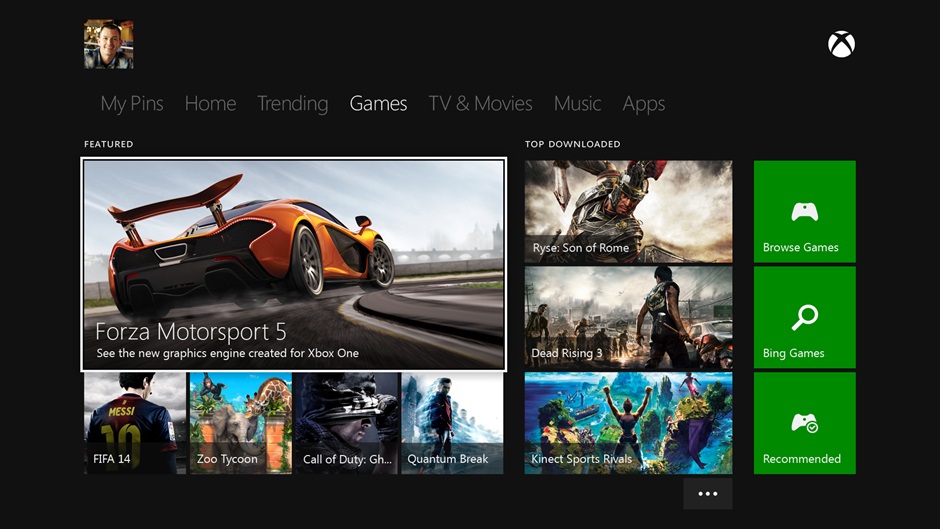
The Xbox One has had a lot of press since it was first announced back in May, with most of the coverage concerning the ever changing details of the console -- the removal of the DRM features, the backtracking on needing Kinect to use the device, the dropping of eight of the planned launch countries…
While the Xbox One might be a very different animal from what was originally revealed, one thing at least remains the same -- the console will play games. And today Microsoft revealed the list of titles available for the console.
In a new blog post, the Xbox Wire Staff introduces the list, saying, "At Xbox, we’re all about delivering gamers the best games. And one of the most-asked questions we get from gamers is 'what games are coming to Xbox One?' The list of global developers working on Xbox One titles is diverse, and includes renowned studios 343 Industries, Access Games, Bungie, Capy Games, Crytek, DICE, EA Sports, Infinity Ward, Insomniac Games, Kojima Productions, PopCap Games, Respawn Entertainment, Turn 10 Studios, Ubisoft Montreal and many more".
Microsoft also reveals some interesting details: 38 percent of titles are exclusive to Xbox One, 37 percent of titles are brand-new IP, 44 percent of titles will include either timed or exclusive content to Xbox One and Microsoft exclusive titles received 272 award nominations and 111 wins at E3 2013.
So what about the games themselves? Well this is the list of exclusives which will appear on the Xbox One before any other console:
- Below (Capy Games, Microsoft Studios)
- Crimson Dragon (Grounding/Land Ho!, Microsoft Studios)
- D4 (Access Games, Microsoft Studios)
- Dead Rising 3 (Capcom Vancouver, Microsoft Studios)
- Disney Fantasia: Music Evolved (Harmonix, Disney Interactive)
- Forza Motorsport 5 (Turn 10 Studios, Microsoft Studios)
- Halo Xbox One (343 Industries, Microsoft Studios)
- Killer Instinct (Double Helix, Microsoft Studios)
- Kinect Sports Rivals (Rare, Microsoft Studios)
- LocoCycle (Twisted Pixel, Microsoft Studios)
- Minecraft: Xbox One Edition (Mojang Studios, Microsoft Studios)
- Plants vs. Zombies: Garden Warfare (PopCap Games, Electronic Arts)
- Powerstar Golf (Zoe Mode, Microsoft Studios)
- Project Spark (Microsoft Studios)
- Quantum Break (Remedy, Microsoft Studios)
- Ryse: Son of Rome (Crytek, Microsoft Studios)
- Sunset Overdrive (Insomniac Games, Microsoft Studios)
- Titanfall (Respawn Entertainment, Electronic Arts)*
- Zoo Tycoon (Frontier Developments Ltd., Microsoft Studios)
And here are the rest of the games that will be available for the console but not exclusively.
- Assassin's Creed IV Black Flag (Ubisoft, Ubisoft)
- Battlefield 4 (DICE, Electronic Arts)
- Call of Duty: Ghosts (Infinity Ward, Activision)
- Destiny (Bungie, Activision)
- Dragon Age: Inquisition (BioWare, Electronic Arts)
- Dying Light (Techland, Warner Bros. Interactive Entertainment)
- EA SPORTS UFC (EA SPORTS, Electronic Arts)
- FIFA 14 (EA SPORTS, Electronic Arts)
- Final Fantasy XV (Square Enix, Square Enix)
- Just Dance 2014 (Ubisoft Paris, Ubisoft)
- Kingdom Hearts III (Square Enix 1st Production Department, Square Enix)
- LEGO Marvel Super Heroes (TT Games, Warner Bros. Interactive Entertainment)
- Mad Max (Avalanche Studios, Warner Bros. Interactive Entertainment)
- Madden NFL 25 (EA SPORTS, Electronic Arts)
- Metal Gear Solid V: The Phantom Pain (Kojima Productions, Konami)
- Mirror's Edge 2 (DICE, Electronic Arts)
- NBA 2K14 (Visual Concepts, 2K Sports)
- NBA LIVE 14 (EA SPORTS, Electronic Arts)
- Need for Speed: Rivals (Ghost Games, Electronic Arts)
- Skylanders: Swap Force (Vicarious Visions, Activision)
- Star Wars Battlefront (DICE, Electronic Arts)
- The Crew (Ivory Towers, Ubisoft)
- The Elder Scrolls Online (ZeniMax Online Studios, Bethesda Softworks)
- The Evil Within (Tango Gameworks, Bethesda Softworks)
- The LEGO Movie Videogame (TT Games, Warner Bros. Interactive Entertainment)
- The Witcher 3: Wild Hunt (CD Projekt RED, Warner Bros. Interactive Entertainment – North America)
- Thief (Eidos Montreal, Square Enix)
- Tom Clancy's The Division (Massive Entertainment, Ubisoft)
- Watch Dogs (Ubisoft Montreal, Ubisoft)
- Wolfenstein: The New Order (MachineGames, Bethesda Softworks)
- Zumba Fitness: World Party (Zoë Mode, Majesco)
Battlefield 4, Call of Duty: Ghosts, and FIFA 14 will have exclusive or timed exclusive content.
What games are you most excited for?
-

eBay My Gadgets makes it easier to sell your unwanted electronic devices
Publié: août 15, 2013, 1:14pm CEST par Wayne Williams
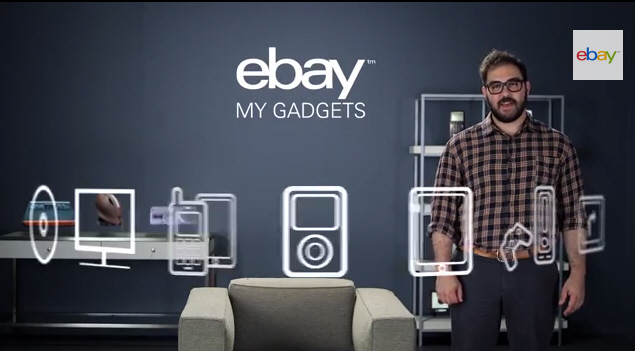
Smartphones, tablets and other gadgets get updated incredibly fast these days. If you want to stay on the cutting edge, and be assured of always having the latest features, and fastest technology, you need to keep upgrading, which leaves the question of what to do with your old tech.
Sell it on eBay, is a fairly obvious solution and now the auction site has officially opened a new service which will make it even easier to do exactly that. eBay My Gadgets is currently only available on the US version of eBay, but will hopefully be made available internationally soon.
Just click the "Add a Gadget" button, start typing in the name of a device, and the service will find that item and let you add it to your collection. The site will automatically include the last 20 devices you bought on eBay, so you don’t have to manually add those.
The current value of each of your gadgets, based on the price they’re selling for on eBay, is listed under the picture, and over time you’ll be able to track value, so you can see when is the best time to sell, helping you maximize your return.
It’s a nifty idea -- it will help eBay to sell more gadgets, and also possibly encourage sellers to list items that they might otherwise not have bothered with. If you think no one wants that old mobile sitting in a desk drawer you’ll be able to add it to My Gadgets and see what you could realistically get for it.
-

Acer announces three stunning new ultra-high resolution monitors
Publié: août 15, 2013, 9:20am CEST par Wayne Williams
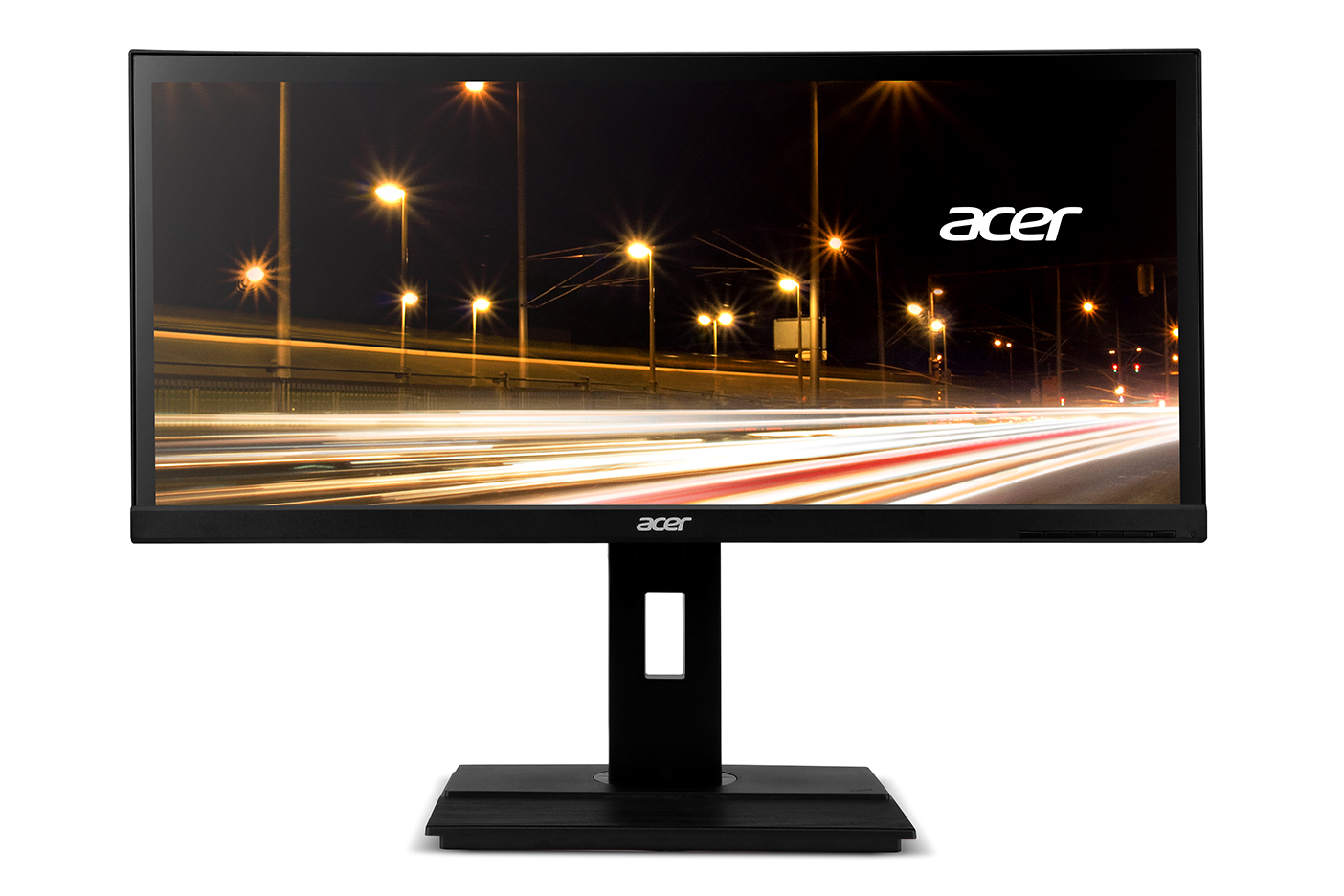
I’m not the sort of person who gets excited about monitors. It’s what’s on the screen that matters after all. However, I have to say Acer’s new line up of LED display models has me salivating. In fact I had to turn down the offer of a review unit because I knew I wouldn’t want to give it back afterwards.
The three models boast up to an ultra-high 2560 by 1440 WQHD resolution and offer large 27 and 29 inch screens for multitasking, and viewing two images at once -- so they can be used to replace a multi-monitor set-up if you desire.
According to Acer the displays deliver excellent viewing angles up to 178 degrees -- both horizontally and vertically.
The Acer T272HUL is a 27-inch consumer model offering 2560 by 1440 WQHD resolution, 1.07 billion colors, fast 5ms response time and 10-point capacitive touch technology -- so if you like prodding and swiping the screen in Windows 8, this is the display for you. The screen can also be tilted back from 30 to 80 degrees -- practically flush with the desk. It comes with VGA, DVI, and HDMI ports and a USB 3.0 hub (1 up, 2 down).
The two other screens don’t offer touch, making them better suited to keyboard and mouse users. The Acer B276HUL offers a 27-inch display and a WQHD 2560 by 1440 resolution, with 16.7 million colors and 6 ms response time. The Acer B296CL is a 29-inch screen with a 2560 by 1080 resolution, 16.7 million colors and a 8 ms response.
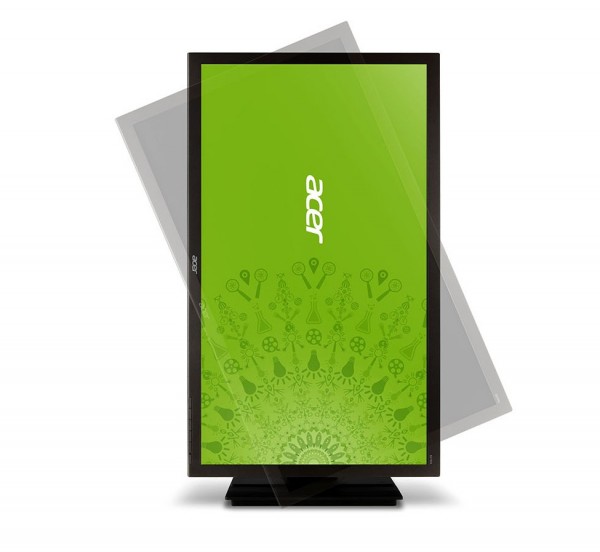 Both come with an ErgoStand that allows you to tilt, swivel, and pivot the screen, and adjust its height. Acer says the displays can be pivoted 90 degrees allowing both horizontal and vertical viewing, and tilted from -5 to 35 degrees back in the high position, and -5 to 25 degrees in the low position. A 120-degree swivel also provides more viewing angles with the ability to move the panel 60 degrees to the right or left without shifting the base. The two displays come with DVI-D (dual link), 2 x HDMI, DisplayPort and a USB 3.0 hub (1 up, 4 down).
Both come with an ErgoStand that allows you to tilt, swivel, and pivot the screen, and adjust its height. Acer says the displays can be pivoted 90 degrees allowing both horizontal and vertical viewing, and tilted from -5 to 35 degrees back in the high position, and -5 to 25 degrees in the low position. A 120-degree swivel also provides more viewing angles with the ability to move the panel 60 degrees to the right or left without shifting the base. The two displays come with DVI-D (dual link), 2 x HDMI, DisplayPort and a USB 3.0 hub (1 up, 4 down)."With the goal of providing our customers a superb viewing experience, our new monitors deliver brilliant images, flexibility in viewing options and generous screen real estate," Frank Chang, director of product management for Acer America says. "Whether it’s a gamer, an entrepreneur or a multimedia enthusiast, users will appreciate the stunning image quality, comfortable ergonomics and size of these new monitors, which are easy on the eyes and enable better multitasking".
The touch friendly T272HUL will be available at leading retailers in late August priced at $999, while the B276HUL and Acer B296CL are available at US Acer resellers now priced from $599.
-

Tracking tablet advertising reveals some interesting insights
Publié: août 14, 2013, 3:14pm CEST par Wayne Williams
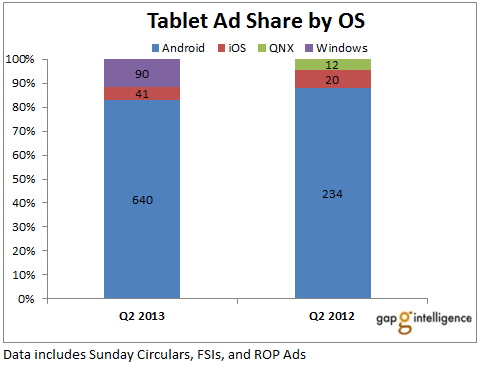 The PC as we know it is dying, and tablets are unquestionably where the sales are right now. As a result, vendors and retailers are clamoring to pull in the consumers by ramping up their advertising spend and exposure.
The PC as we know it is dying, and tablets are unquestionably where the sales are right now. As a result, vendors and retailers are clamoring to pull in the consumers by ramping up their advertising spend and exposure.In Q2 2013, according to data gathered by analyst firm gap intelligence, vendors and retailers placed a total of 771 tablet ads in print media in the US, up 266 from the same quarter last year, and while 83 percent of the adverts were for Android tablets, Windows devices made a big splash, accounting for 12 percent of all ads. When new products launch, or sales aren't great -- both true in this case -- it's quite typical to see an increase in ad spending in order to reach as many consumers as possible.
Gap intelligence tracks and captures Sunday retail ads in newspapers, free standing inserts and ROP (right off press) for the major retail chains and its findings show that while Walmart took the decision to place less adverts in the quarter -- just 12, down from 16 in Q2 2012 -- most retailers significantly increased their exposure.
Big-box store hhgregg topped the list of tablet ads by retailer with a whopping 162 adverts in Q2 2013, up from just 12 ads in Q2 2012. Staples placed 140 ads, 89 more than this time last year, and Fry’s Electronics placed 136 ads, up from 61.

While retailers place the advertisements, vendors such as Apple and Samsung pay them to include their brands in the ads each month.
In Q2 Samsung took the lead with a total of 228 ads, up 516 percent compared to last year. Amazon followed with 134 ads. Google, Microsoft and HP combined contributed 110 ads.
Apple, which usually avoids print media, placed 41 ads during the quarter, up from 13 in Q1 -- likely in an effort to balance the inevitable sales drop off caused by not introducing any new iPads this spring/summer.

Gap intelligence also recorded tablet print ads by size. 7 inch and smaller tablets accounted for 362 ads, while 10 inch and above featured in 294 ads. There were 115 ads for 8 and 9 inch tablets, the class which saw the largest growth (a 539 percent increase). This is consistent with Samsung and Amazon being the ad-spending leaders, as both firms make models in these sizes -- Note 8 and Fire HD 8.9.
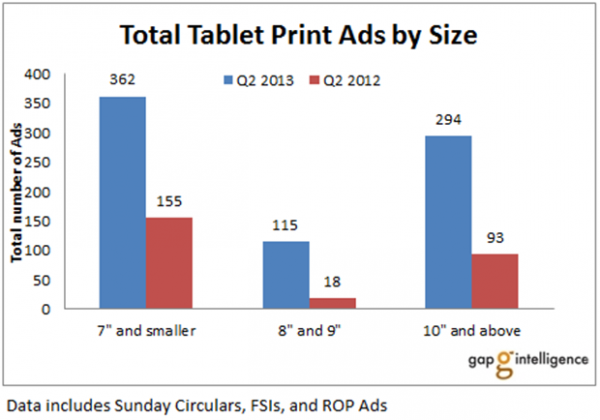
Graphics credit: Gurpreet Kaur, industry analyst for gap intelligence
-

Microsoft claims third place in the smartphone race as BlackBerry hits reverse
Publié: août 14, 2013, 1:00pm CEST par Wayne Williams
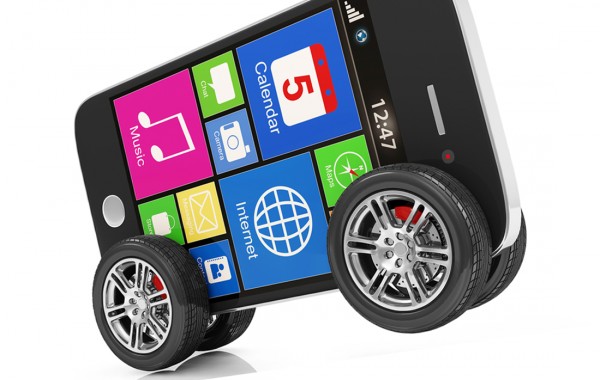
Worldwide mobile phone sales totaled 435 million units in the second quarter of 2013, according to Gartner, notching up a moderate 3.6 percent increase over the 420 million units sold in the same period last year.
The big news however, is smartphone sales finally exceeded those of feature phones, with the former selling 225 million units, up 46.5 percent from the 153 million sold in the second quarter of 2012, and the latter managing just 210 million units for a 21 percent drop year-over-year.
Asia/Pacific, Latin America and Eastern Europe experienced the highest smartphone growth, while Samsung maintained the No. 1 position in the smartphone market, increasing its dominance with global sales of 71.381 million units, for a 31.7 percent market share, up 2 percent from this time last year.
Apple remains in second place with sales of 31.89 million units. Despite selling some three million more phones in the quarter compared to Q2 2012, its market share slid 4.6 percent to 14.2 percent.
LG takes the third vendor slot with 5.1 percent market share, ahead of Lenovo with 4.7 percent and ZTE with 4.3 percent.
Worldwide Smartphone Sales to End Users by Vendor in 2Q13 (Thousands of Units)
Company 2Q13
Units
2Q13 Market Share (%)
2Q12
Units
2Q12 Market Share (%)
Samsung 71,380.9
31.7
45,603.8
29.7
Apple 31,899.7
14.2
28,935.0
18.8
LG Electronics 11,473.0
5.1
5,827.8
3.8
Lenovo 10,671.4
4.7
4,370.9
2.8
ZTE 9,687.6
4.3
6,331.4
4.1
Others 90,213.6
40.0
62,704.0
40.8
Total 225,326.2
100.0
153,772.9
100.0
Source: Gartner (August 2013)
Microsoft hasn’t enjoyed much good news recently, but it has something to celebrate today as Gartner shows Windows Phone claiming third place in the smartphone operating system race with a 3.3 percent market share. However, Windows Phone didn’t so much overtake BlackBerry as roll slightly forward while the Canadian OS reversed past at speed. BlackBerry dropped 2.5 percent to take 2.7 percent this quarter.
"While Microsoft has managed to increase share and volume in the quarter, [it] should continue to focus on growing interest from app developers to help grow its appeal among users", Anshul Gupta, principal research analyst at Gartner says.
Third place remains a very long way off the leaders though. iOS has 14.2 percent market share, while Android now totally dominates with an unassailable 79 percent, up a whopping 14.8 percent compared with this time last year.
Worldwide Smartphone Sales to End Users by Operating System in 2Q13 (Thousands of Units)
Operating System 2Q13
Units
2Q13 Market Share (%)
2Q12
Units
2Q12 Market Share (%)
Android 177,898.2
79.0
98,664.0
64.2
iOS 31,899.7
14.2
28,935.0
18.8
Microsoft 7,407.6
3.3
4,039.1
2.6
BlackBerry 6,180.0
2.7
7,991.2
5.2
Bada 838.2
0.4
4,208.8
2.7
Symbian 630.8
0.3
9,071.5
5.9
Others 471.7
0.2
863.3
0.6
Total 225,326.2
100.0
153,772.9
100.0
Source: Gartner (August 2013)
Combining all mobile phone sales, Nokia remains the second most successful vendor after Samsung. However, slowing demand for feature phones caused the Finnish firm to lose nearly 6 percent of its total worldwide market share compared with this time last year. However, it is enjoying success with its Lumia line. According to Gartner, sales of those devices grew 112.7 percent in the second quarter of 2013 thanks to an expanded portfolio. "With the recent announcement of the Lumia 1020, Nokia has built a wide portfolio of devices at multiple price points, which should boost Lumia sales in the second half of 2013", Mr. Gupta says, before sounding a word of caution. "However, Nokia is facing tough competition from Android devices, especially from regional and Chinese manufacturers which are more aggressive in terms of price points".
Worldwide Mobile Phone Sales to End Users by Vendor in 2Q13 (Thousands of Units)
Company
2Q13
Units
2Q13 Market Share (%)
2Q12
Units
2Q12 Market Share (%)
Samsung 107,526.0
24.7
90,432.1
21.5
Nokia 60,953.7
14.0
83,420.1
19.9
Apple 31,899.7
7.3
28,935.0
6.9
LG Electronics 17,016.4
3.9
14,345.4
3.4
ZTE 15,280.7
3.5
17,198.2
4.1
Huawei 11,275.1
2.6
10,894.2
2.6
Lenovo 10,954.8
2.5
6,821.7
1.6
TCL Communication 10,134.3
2.3
9,355.7
2.2
Sony Mobile Communications 9,504.7
2.2
7,346.8
1.7
Yulong 7,911.5
1.8
4,016.2
1.0
Others 152,701.5
35.1
147,354.60
35.1
Total 435,158.4
100.0
420,120.0
100.0
Source: Gartner (August 2013)
Gartner’s latest report "Market Share Analysis: Mobile Phones, Worldwide, 2Q13" is available on the firm’s website.
Photo Credit: Rashevskyi Viacheslav/Shutterstock
-

Google Street View lets would-be companions step inside Doctor Who's TARDIS
Publié: août 13, 2013, 10:06pm CEST par Wayne Williams

I, like many British people, grew up with Doctor Who. Looking back, some of the episodes of my youth that had me hiding behind the settee in fear were laughable rather than scary, but back then we didn’t know any better. Doctor Who these days though is a much more polished affair, with better effects, more convincing aliens and improved storytelling.
If you’re a fan of the Doctor and have always dreamed of going on adventures in his TARDIS but have never been lucky enough to have the iconic blue police box materialise in front of you, now is your chance thanks to Google and a hidden Street View Easter egg.
Head to Earls Court and you’ll see the battered blue time machine sitting by the side of the road near the tube station. Position your mouse cursor just in front of the TARDIS doors, hit the up key on your keyboard and you’ll suddenly find yourself inside the police box where you can spend some time exploring.
While the TARDIS is much bigger on the inside than the outside, there isn’t really much to see or do there, and the Doctor and his companion (whoever it might be in this time zone) are nowhere to be seen. Still, it’s a great little addition and you never know, if you hang around long enough, the Doctor might just appear and invite you to join him on his travels through time and space…
-

Stockholders sue Microsoft over Surface RT's disastrous performance
Publié: août 13, 2013, 7:14pm CEST par Wayne Williams
 Microsoft is facing a class action suit brought by law firm Robbins Geller on behalf of purchasers of Microsoft Corporation common stock during the period between April 18, 2013 and July 18, 2013 (the "Class Period").
Microsoft is facing a class action suit brought by law firm Robbins Geller on behalf of purchasers of Microsoft Corporation common stock during the period between April 18, 2013 and July 18, 2013 (the "Class Period").According to the suit, during the stated period, Microsoft "issued materially false and misleading statements regarding the Company’s financial performance and its tablet computer, the Surface RT" -- or to put it in laymen's terms, the company lied about the poor demand and sales of Surface RT, and about the earnings related to the tablet.
A suit of this nature was all but inevitable, seeing as Microsoft has revealed very little about how many units of Surface RT it has sold since launch, and the $900 million Surface RT write-down announced as part of its Q4 2013 earnings report, leading to the tech giant's common stock suffering its biggest price decline in more than four years -- plunging $4.04 per share, or 11.4 percent.
The class action was filed in United States District Court for the District of Massachusetts and names Microsoft CEO Steve Ballmer, former CFO Peter Klein, corporate VP and CAO Frank Brod and Chief Marketing Officer and CFO of Windows Division Tami Reller as defendants.
The suit, which you can read in full here, is of course very damning, and packed with choice statements. Here’s a taster:
Unbeknownst to investors, by the end of its March 31, 2013 quarter, Microsoft had amassed a large excess of Surface RT inventory. In violation of the Company’s publicly disclosed inventory accounting policy, generally accepted accounting principles (“GAAP”) and SEC rules and regulations, Defendants caused Microsoft to issue materially false and misleading financial statements and financial disclosures for the quarter ended March 31, 2013. These false and misleading statements materially misrepresented the true financial effect that Surface RT was then having on the Company’s operations.
Defendants’ materially false and misleading conduct enabled Microsoft to forestall Surface RT’s day of reckoning and delay what would be tantamount to an admission by the Company that its all-important entry into the tablet market had been a failure.
Saddled with bloated inventory of unwanted Surface RT tablets, Defendants, in the Spring of 2013, hopelessly tried to spur market demand. First, Microsoft gave consumers a free magnetic cover that doubles as a keyboard -- a deal that amounted to a $100.00 discount off the combined $600.00 price tag for the cover and Surface RT. Later, Microsoft slashed the price of the Surface RT tablet by 30 percent. Neither of these initiatives generated meaningful sales of Surface RT.
Then, on July 18, 2013, Microsoft issued a press release announcing that its financial results for the quarter ended June 30, 2013 had been adversely impacted by a $900 million charge related to a write-down in the value of its Surface RT inventory. In truth, however, the value of such inventory was materially impaired by March 31, 2013.
In a press release announcing the action, Robbins Geller describes itself as a firm with "expertise in prosecuting investor class actions and extensive experience in actions involving financial fraud".
This isn't the first legal action relating to Surface RT. In November, a Los Angeles based lawyer filed a suit against Microsoft alleging that the company was misleading consumers about the amount of storage space available on the tablet.
Photo Credit: VIPDesignUSA/Shutterstock
-

Microsoft’s new tablet ads -- comparing apples with lemons
Publié: août 9, 2013, 11:48am CEST par Wayne Williams
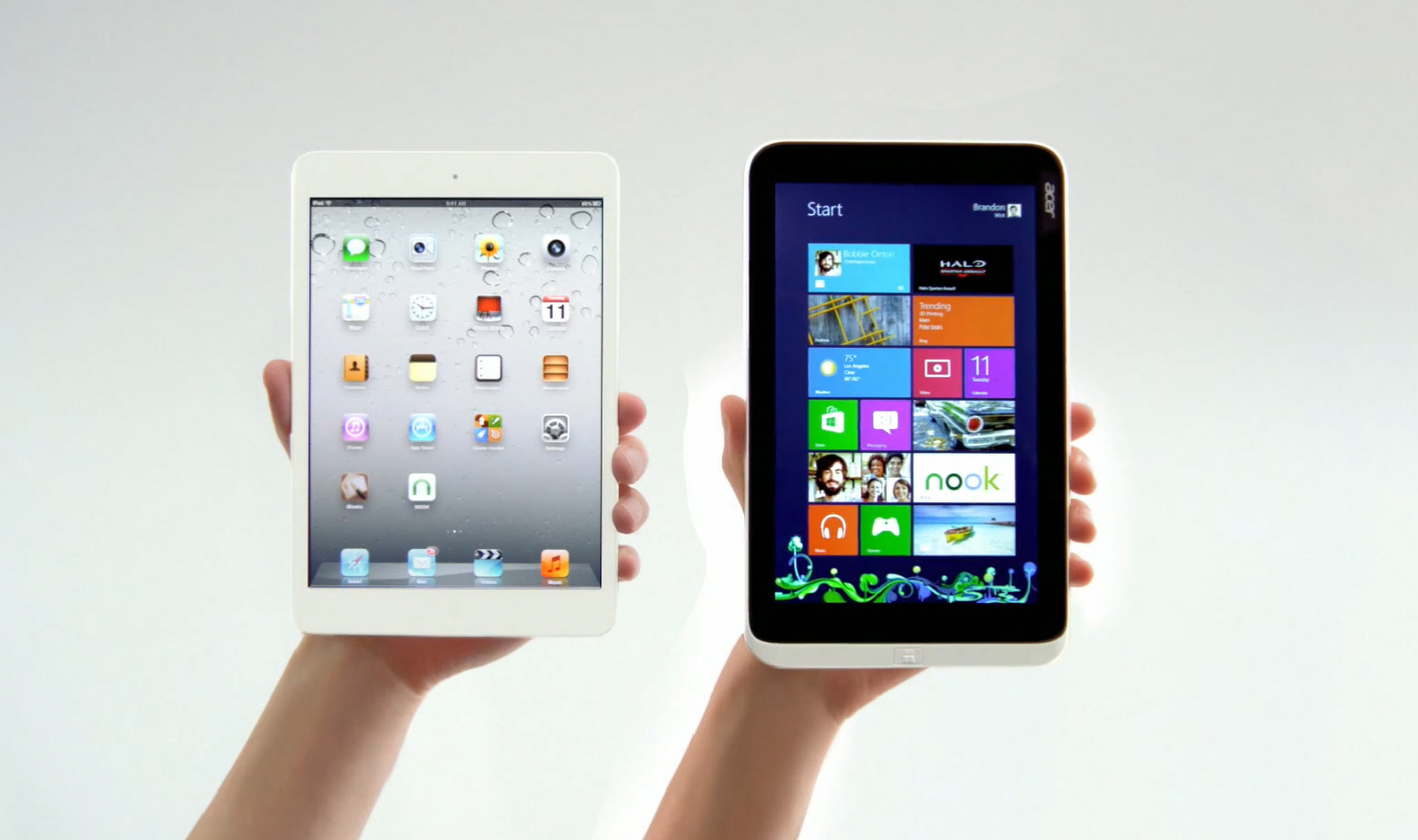
This week Microsoft rolled out two new video adverts -- one pitting Surface RT against the iPad, and the other putting the Acer Iconia W3 next to the iPad mini. The adverts follow the same format as previously with a side by side look at the features on offer.
Of course the comparisons aren’t fair. Microsoft picks areas where its tablet/operating system is strongest, and avoids the areas where it’s weakest -- apps and popularity, for example. It’s a lot like comparing apples with oranges (or, yes, lemons in the case of poorly selling Windows devices) and then pointing out that it’s easy to peel an orange, but you need to buy a separate peeler to accomplish the same task on an apple.
The Surface RT vs. iPad ad plays over the top of a music track and starts by comparing thickness, weight and size of the devices before Microsoft rolls out the first of its "trump" cards -- the iPad has no keyboard, but Surface has an integrated kickstand and (optional) keyboard! The integrated kickstand is great on Surface because it’s not the most comfortable tablet in the world to hold, but it’s hardly a big selling point. You can buy stands and keyboards for the iPad, and there’s plenty of choice. But also, and most importantly -- these are tablets not notebooks. It’s the portability of the format that people like.
Next up, why of course it's Microsoft Office. In the video, the iPad user is shown prodding at a document they can’t apparently do anything with, while the Surface RT user is working in PowerPoint. On that keyboard.
The ad then shows how you can multitask on Surface RT, with split screen, before pointing out Surface’s built-in USB port and the fact you need a separate adaptor on the iPad if you want to connect a USB device. Finally, Microsoft reveals the nice new big difference -- price. The iPad is $499 for 16GB, Surface RT now $349 for 32GB. Even though with the latter you in fact only get 15GB of usable space.
The Acer Iconia W3 vs. iPad mini advert goes back to using the voice of Siri to compare the two devices. Apple’s voice assistant suggests they read together, but the Acer device wants to play Halo instead. Siri is amazed the other tablet has that game. Personally I’m amazed Siri didn’t say "You want to play games? Check out my massive selection". Or more to the point that she didn’t ask "what the hell is wrong with your screen?" The Iconia W3 famously has one of the worst displays ever made. In his review of Acer’s device, my colleague Brian Fagioli described it as having "a yellowish, washed-out, pixelated look -- it looks dirty and smudged all the time". Which was being kind.
Siri is then stunned that the Iconia W3 has Office (you think she’d know that by now, seeing as it’s shown in every advert). "Wow you are a real PC" she says, with what sounds to my ears like sarcasm dripping off every word, before ending with "let’s just go back to reading". Presumably because poor Siri is getting a migraine from staring at the Iconia’s screen. The video ends with the price comparison: $429 for the 32GB iPad Mini vs. $299 for the 32GB Iconia W3.
In all seriousness, it’s a smart move for Microsoft to compare Surface RT and Windows 8 tablets with the iPad, especially now the price difference clearly favors the Windows slates. But I feel whoever puts the adverts together could be doing a far better job. There’s much more to the Windows devices than Office, one game, and a bit that juts out of the back of Surface.
What do you think of the ads?
-

Get ready to watch the LG G2 launch live here
Publié: août 7, 2013, 12:54pm CEST par Wayne Williams
LG is set to launch the G2, its new flagship smartphone, in New York later today. The usual raft of pre-launch leaks means we know the device will be powered by a Qualcomm Snapdragon 800 processor, sport a 5.2-inch 1080p display and come with a 13-megapixel camera.
Other details will be revealed by the South Korean electronics giant during the launch event, but if you’re not in New York, or haven’t received an invite to the unveiling, don’t worry -- BetaNews has saved you the best seat in the house.
You can tune into the event here live, and if you’re a bit late -- thanks to work or other pesky distractions -- you’ll be able to catch up on it afterwards (and skip ahead to the really good bits).
The event kicks off at 11am New York time, which is 8am in San Francisco and 4pm in the UK. We’ll also bring you news on the device once it’s been officially announced.
-

Yahoo tries on 30 days of new logos to find one that fits
Publié: août 7, 2013, 9:48am CEST par Wayne Williams
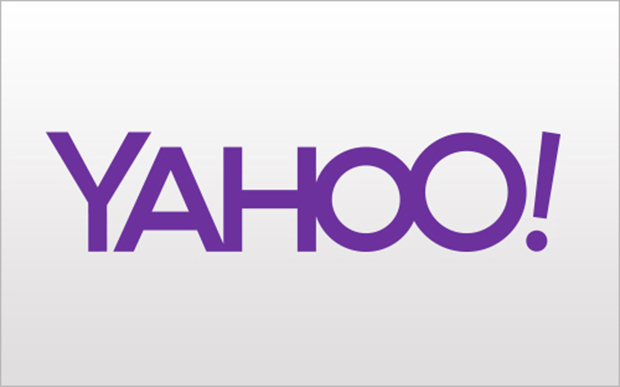
When a company wants to reinvent itself, portray a different direction or show a modernization, the change is usually accompanied by the arrival of a new logo. Microsoft, for example, last year changed its decades old design to reflect its transition into a devices and services company.
Now Yahoo, which under Marissa Mayer is attempting to modernize its image and become more relevant after years of neglect, is planning to change its logo too. No, it’s not going to be swapping the exclamation point for a question mark or anything as interesting as that, but it is going to try on various logo styles.
Starting today, Yahoo will be showing off 30 designs, one a day. You’ll be able to view each day’s new logo on the company's Tumblr, Facebook page and on Twitter. The first attempt is shown above.
Sadly you won’t be able to vote on which you think is the winner. Yahoo understandably isn’t going to hand over the keys of its branding to 4chan. Instead, it will be revealing the official new logo on September 4th at 9pm PST.
Don’t expect anything too outlandish, or different for that matter. According to Kathy Savitt, Chief Marketing Officer, "We also want to preserve the character that is unique to Yahoo! -- fun, vibrant, and welcoming -- so we’ll be keeping the color purple, our iconic exclamation point and of course the famous yodel. After all, some things never go out of style".
-

Surface sales are pathetic
Publié: août 6, 2013, 1:06pm CEST par Wayne Williams
 It feels like repeatedly kicking someone when they’re down, but there’s really no other way to describe Windows tablet sales -- both RT and Windows 8 Pro -- other than pathetic and embarrassing for Microsoft. Which is a shame. Surface is a great tablet, Windows 8 on Surface is a good operating system, but people just aren’t buying the device in any great numbers. Well, pre-fire sale at least.
It feels like repeatedly kicking someone when they’re down, but there’s really no other way to describe Windows tablet sales -- both RT and Windows 8 Pro -- other than pathetic and embarrassing for Microsoft. Which is a shame. Surface is a great tablet, Windows 8 on Surface is a good operating system, but people just aren’t buying the device in any great numbers. Well, pre-fire sale at least.According to a new report from IDC, just 200,000 Windows RT tablets shipped in Q2 2013 (even the ailing BlackBerry PlayBook managed 100,000), and there’s no good news for other Windows tablets either as IDC reports just 1.8 million devices shipped with that OS onboard. Apple, by comparison, shipped 14.6 million iPads in the same quarter.
Worldwide tablet shipment growth slowed noticeably -- surprising precisely no one -- as there were no exciting new devices to drool over. According to preliminary data from IDC’s Worldwide Quarterly Tablet Tracker total tablet shipping volumes fell -9.7 percent from 1Q13 to 45.1 million units. But that number was up 59.6 percent from the same quarter in 2012, when tablet vendors shipped 28.3 million devices. IDC defines a tablet as any LCD-based slate with a screen size of between 7 and 16 inches.
The iPad’s 14.6 million shipments were lower than predicted and down from 19.5 million in 1Q13. Second-place Samsung shipped 8.1 million units, down from 8.6 million in the first quarter, but a marked improvement over the 2.1 million units shipped in 2Q12. ASUS, taking the third place slot, shipped a total of 2 million units in 2Q13, down from 2.6 million in 1Q13. Lenovo shipped 1.5 million devices, up a whopping 313.9 percent from a year ago, and Acer shipped 1.4 million tablets for 247.9 percent year-over-year growth.
"The tablet market is still evolving and vendors can rise and fall quickly as a result," Ryan Reith, Program Manager for IDC's Mobility Tracker programs observes. "Apple aside, the remaining vendors are still very much figuring out which platform strategy will be successful over the long run. To date, Android has been far more successful than the Windows 8 platform. However, Microsoft-fueled products are starting to make notable progress into the market".
Top Five Tablet Vendors, Shipments, and Market Share, Second Quarter 2013 (Shipments in millions)
Vendor 2Q13 Unit Shipments
2Q13 Market Share
2Q12 Unit Shipments
2Q12 Market Share
Year-over-Year Growth
1. Apple 14.6
32.4%
17.0
60.3%
-14.1%
2. Samsung 8.1
18.0%
2.1
7.6%
277.0%
3. ASUS 2.0
4.5%
0.9
3.3%
120.3%
4. Lenovo 1.5
3.3%
0.4
1.3%
313.9%
5. Acer 1.4
3.1%
0.4
1.4%
247.9%
Others 17.5
38.8%
7.4
26.2%
136.6%
Total 45.1
100.0%
28.3
100.0%
59.6%
Source: IDC Worldwide Tablet Tracker, August 5, 2013.
Top Tablet Operating Systems, Shipments, and Market Share, Second Quarter 2013 (Shipments in Millions)
Vendor 2Q13 Unit Shipments
2Q13 Market Share
2Q12 Unit Shipments
2Q12 Market Share
Year-over-Year Growth
1. Android 28.2
62.6%
10.7
38.0%
162.9%
2. iOS 14.6
32.5%
17.0
60.3%
-14.1%
3. Windows 1.8
4.0%
0.3
1.0%
527.0%
4. Windows RT 0.2
0.5%
N/A
N/A
N/A
5. BlackBerry OS 0.1
0.3%
0.2
0.7%
-32.8%
Others 0.1
0.2%
N/A
N/A
N/A
Total 45.1
100.0%
28.3
100.0%
59.6%
In drastically cutting the price of Surface RT and, most recently, Surface Pro, Microsoft is hoping to drive sales and finally kickstart its tablet line. Windows tablets account for just 4.5 percent market share, lagging miles behind iOS (32.5 percent) and Android (62.6 percent) so there's a lot of serious catching up to do.
Photo Credit: stefanolunardi/Shutterstock
-

Nokia parodies iPhone 5 advert, shows off the quality of Lumia 925's camera
Publié: août 5, 2013, 8:44pm CEST par Wayne Williams
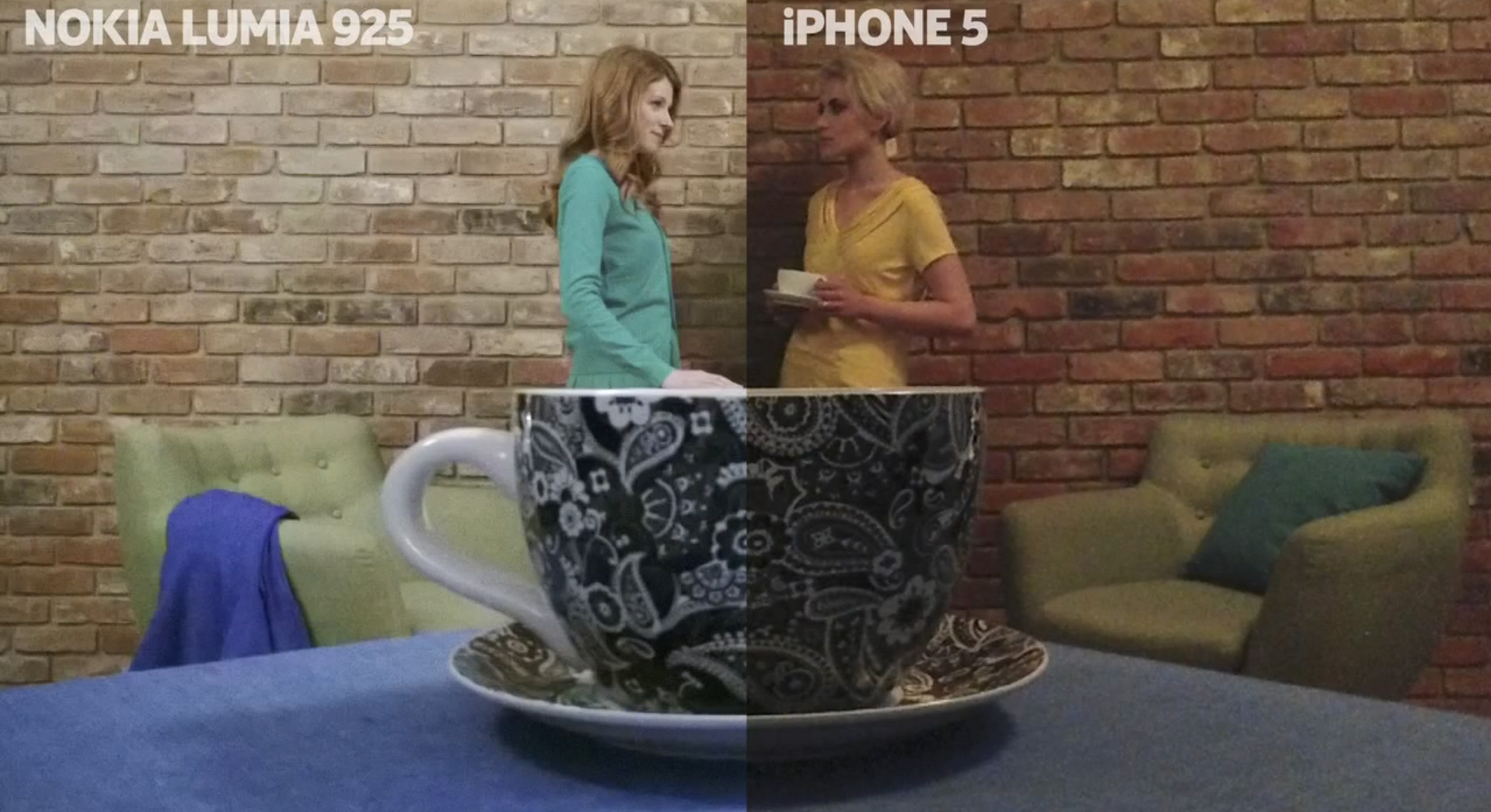
Nokia has released a new video comparing the quality of the Lumia 925’s camera with that of the Apple iPhone 5. You don’t need to be a genius to guess which device comes out the clear winner.
Headed "Better Photos Every Day" the video might seem more than a little familiar on first viewing as it parodies Apple's iPhone 5 commercial and starts with a voiceover informing viewers that "every day more photos are taken on the iPhone than any other phone" before stating "at Nokia we prefer to build for quality not just quantity".
The video then goes on to show both the Nokia and Apple cameras in action, comparing shots taken with the two devices side by side. The Lumia 925 does exciting action shots, with and without motion blur, while the iPhone 5 manages boring rather drab images. Shots taken using the flash on Nokia’s smartphone look natural, on Apple’s device they are washed out.
The video also includes scenes which are very close to those in the original iPhone 5 ad -- people taking pictures of windows and their feet. Even the start of the advert is remarkably similar.
It’s a clever ad, which does a good job of showcasing the quality of the Lumia 925’s camera (even if, slightly unfairly, it's comparing a new phone with a year old model), and finishes with the line, "Everyday better photos are taken with Nokia Lumias than with any other mobile".
See what you think below. For comparison you can watch the Apple original afterwards.
-

Internet Explorer remains three of the top five web browsers
Publié: août 2, 2013, 10:36am CEST par Wayne Williams
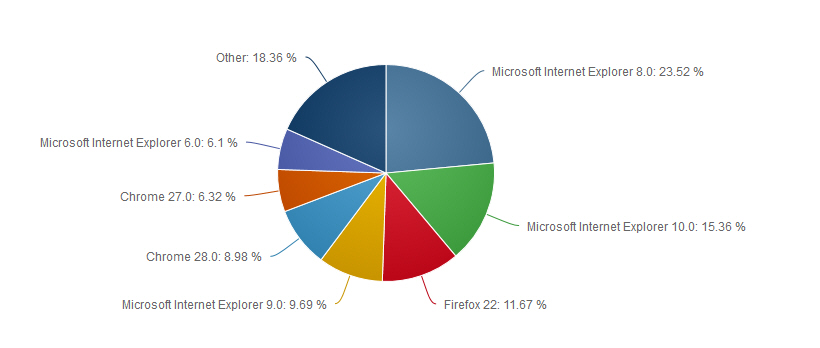
Internet Explorer might no longer hold 96 percent of the browser market like it did back in 2002, but Microsoft’s browser still remains hugely popular. Firefox and Chrome took large bites out of IE’s dominance, but they have yet to topple it, and don’t look set to do so any time soon.
According to new figures from Net Applications, Internet Explorer 8 is the most popular browser on the desktop with 23.52 percent global market share. And it’s not the only incarnation of IE in the top five either.
In second place is Internet Explorer 10, helped by its integration in Windows 8 no doubt, with 15.36 percent.
Firefox 22 makes an appearance at three with 11.67 percent, followed by… hands up if you guessed Google’s browser? Put your hands down, you’re wrong. It’s IE9 with 9.69 percent. Chrome 28 rounds out the top five with 8.98 percent, followed by Chrome 27 with 6.32 percent.
Combined, Internet Explorer’s total market share in July 2013 was 56.61 percent, followed by Firefox with 18.29 percent and Chrome with 17.76 percent. Safari has 5.42 percent and Opera a lowly 1.49 percent.
The mobile/tablet results naturally show a very different story. There Safari is king with a whopping 58.75 percent thanks to its iOS integration, followed by Android (20.59 percent), Opera Mini (9.42 percent), Chrome (4.44 percent), BlackBerry (2.32 percent) and Internet Explorer (1.88 percent).
You can view the report at Net Applications.
-

Soluto for Servers lets you manage Windows servers remotely
Publié: août 1, 2013, 1:17pm CEST par Wayne Williams
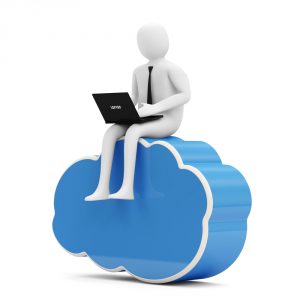 I use Soluto to manage my PCs and iOS devices, as well as hardware belonging to a select group of less technically literate friends and family. It’s a handy service that makes it easy to view hardware details of the devices you’re monitoring, as well as cut boot times, manage and update apps, remove unwanted browser extensions, and more.
I use Soluto to manage my PCs and iOS devices, as well as hardware belonging to a select group of less technically literate friends and family. It’s a handy service that makes it easy to view hardware details of the devices you’re monitoring, as well as cut boot times, manage and update apps, remove unwanted browser extensions, and more.The firm has just introduced a new feature called Soluto for Servers which adds Windows servers to the list of devices available to manage. You just need to download an installer and run it on each of your servers.
Soluto says the new addition offers the following benefits:
- Smart Real-time Alerts -- Get real-time email alerts. For example, we’ll alert you when your disk space is running out or when your server’s CPU is overloaded for too long and more.
- Remote access -- Access your server from anywhere, anytime. Easily perform actions and maintenance jobs, even on-the-go, from your mobile device’s browser.
- Weekly Performance reports -- Receive weekly performance reports on CPU, RAM and I/O usage. Check your server’s performance trends, up time and identify activity peaks and busy days.
- Monitoring -- You can monitor your server’s health and hardware status, check current disk space, hardware specifications and install Windows Updates.
- All devices in one place -- Whether you have PCs, iPhones, iPads or Windows servers you can manage all of them together from the same dashboard, and from any browser.
Soluto is free for up to three devices, and there is a choice of paid plans on offer including Pro (up to ten devices for $8.33 a month), Business Pro (up to 50 devices for $49.99 a month) and Ultimate (up to 150 devices for $249.99 a month).
Photo Credit: Rashevskyi Viacheslav/Shutterstock
-

IE11 improves touch experience in Windows 8.1
Publié: août 1, 2013, 9:53am CEST par Wayne Williams
 Internet Explorer is an integral part of Microsoft's tiled operating system, and the software giant has endeavoured to improve the way it handles touch in Windows 8.1, adding new touch elements and improving existing ones.
Internet Explorer is an integral part of Microsoft's tiled operating system, and the software giant has endeavoured to improve the way it handles touch in Windows 8.1, adding new touch elements and improving existing ones.In a new blog post Microsoft discusses the changes it has made which, if you’re planning on using the OS refresh on a touch enabled device, you’ll likely find both interesting and welcome.
The touch updates include:
- Reliable hover menus with touch -- Emulates hovering your mouse over a button or menu.
- Improved link highlighting -- When you go to tap on a link it will be highlighted so you’ll know you’re selecting the right element on the page.
- Navigating back and forward using swipe gestures -- IE11 caches the previous page to memory, so it will load instantaneously when you swipe back. The browser will also display a thumbnail of the page you’re loading when you tap the back or forward buttons.
- HTML5 drag and drop with touch -- On by default, you just press and hold an item to activate the drag and drop feature (you can try it out here).
- Direct manipulation for mouse, keyboard, touchpad and touch -- Introduces hardware-accelerated pan and zoom technology to all input types.
- Improved touch APIs with pointer events -- IE11 includes updated MSPointer APIs to reflect the latest Candidate Recommendation specification. The finished version of the browser will support unprefixed Pointer Events.
Summing up the changes in IE11, Michael Patten, Lead Program Manager, Internet Explorer says:
With Windows 8, we set out to build the world’s best touch experience. Internet Explorer 11 builds on the modern, fast, fluid experience that’s perfect for touch, even for today’s Web that isn’t necessarily designed for touch. With hardware accelerated direct manipulation, pages stick to your finger while panning and zooming for a fluid and natural experience. The browser UI stays out of your way when you start interacting with the page so sites come alive. You can see how developers are using IE’s industry leading standards APIs to build engaging touch experiences including sites like GlacierWorks, Atari, and Contre Jour, as well as examples from the IE Test Drive like Touch Effects and Browser Surface. Internet Explorer 11 continues to innovate by introducing new touch features and improving existing features to provide the best touch experience yet.
Photo Credit: lukacs tamas/Shutterstock
-

Surface's failure casts yet more doubt on Microsoft's Windows 8 vision
Publié: juillet 31, 2013, 2:17pm CEST par Wayne Williams
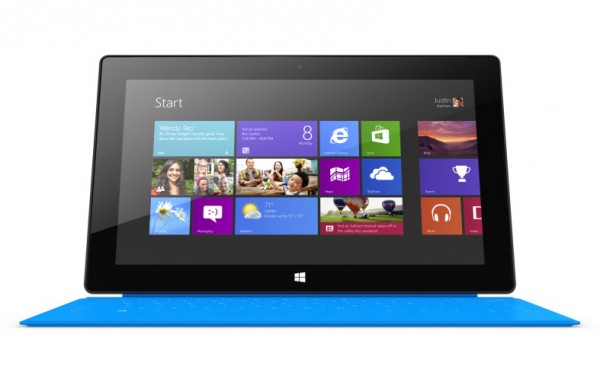 Yesterday a striking fact regarding Surface was revealed in a SEC filing from Microsoft. The software giant's tablet lineup brought in revenue of $853 million in the company's fiscal year 2013 -- just under the embarrassing $900 million Surface-related write off Microsoft declared two weeks ago.
Yesterday a striking fact regarding Surface was revealed in a SEC filing from Microsoft. The software giant's tablet lineup brought in revenue of $853 million in the company's fiscal year 2013 -- just under the embarrassing $900 million Surface-related write off Microsoft declared two weeks ago.$853 million might sound like quite a lot of money, but what it actually means is the tablet line is a flop, with Microsoft selling just slightly more Surface PCs in a year than Apple shifts iPads in a week.
Let's look closer at that $853 million that Surface brought into Microsoft. We don't know how much of that comes from Surface RT and how much from Surface Pro (Microsoft simply lumps everything together as "Surface revenue" in the SEC filing), but if we divide the figure by $500, which is how much the base Surface RT model cost before the recent price cut, that shows the maximum number of Surface tablets sold prior to June is around 1.7 million, except of course it will be a lot lower than that.
Microsoft makes $x revenue (say $500 for the base 32 GB Surface RT -- pre-price reduction) from each tablet it sells directly, but ones sold by other retailers will bring in less revenue for the tech giant (the retailers have to take their cut after all), so it could have sold more devices. However, factor in the more expensive variants of Surface -- the 64 GB RT model retailed for $599, and the Surface Pro models are priced from $899 -- and the number of actual tablets sold could well drop significantly.
A fair estimate, pre-price cut, might be 1.5 million units sold since launch. Apple, in comparison, sells around 1.2 million iPads a week.
So, Surface has clearly got off to the worst possible start. There's no other way to look at it, but there are reasons for this. Before the tablet even launched, I said "Microsoft's Surface pricing dilemma is two opportunities waiting to be missed" -- the tablet could have been priced high, to show the quality, or priced low, to compete with rival products (well, the iPad). I said Microsoft would likely price both flavors of Surface somewhere middling, which it did, and which was a mistake. To make an impact low was the way to go.
Microsoft's initial marketing of the tablet was awful -- dancers and clicking keyboards is not how you sell a tablet that is much more advanced (and more expensive) than the competition.
The retail spread at launch was dreadful too -- patchy distribution in the US, pretty much non-existent online and retail availability in the rest of the world.
The launch of the Surface range was, in a word, botched.
That the reviews weren't universally glowing, and consumers were confused by Windows RT, didn't help Surface's start either.
Going back to the article I wrote a year ago, I said this:
Microsoft really needs Surface to succeed. I mean, really, really, needs it to succeed. Because Surface runs Windows 8, properly. Surface runs Windows how it's been designed to run. Windows 8 has, after all, been built with touchscreen devices in mind.
People talk about Windows 8 as being an operating system, but it's more than that. It's a strategy. Microsoft wants you to use its OS on every device you own. It wants you to see its logo when you fire up your desktop PC or laptop, when you turn on your Windows Phone 8, and when you use a tablet.
On the PC, controlled using a keyboard and mouse, Windows 8 is clumsy and awkward. Joe Wilcox sums up the experience perfectly here, and for that reason, the new OS could well flop. Windows XP die-hards are unlikely to want to switch to it and Windows 7 users will be similarly reluctant.
Which leaves Windows 8-powered tablets to save the day. And by tablets, I mean Surface.
The PC is dying and Windows 8 adoption in the enterprise is reportedly awful. Surface is the Windows 8 Pro flagship tablet (and pretty much the only place to find Windows RT these days) so if that's not selling either, it does beg an important question -- what does this all mean for Microsoft's divisive operating system?
Windows 8.1 will be with us soon, and there's no question that's a big improvement over Windows 8. Microsoft is actively targeting the enterprise with the OS refresh, and Surface RT has seen a price cut, and enjoyed a surge in sales as a result, but will that be enough, or is more drastic action required?
I'd love to know what you think, so please leave your thoughts in the comments below.
-

Microsoft releases Windows 8.1 Enterprise Preview -- available to download now
Publié: juillet 30, 2013, 7:07pm CEST par Wayne Williams
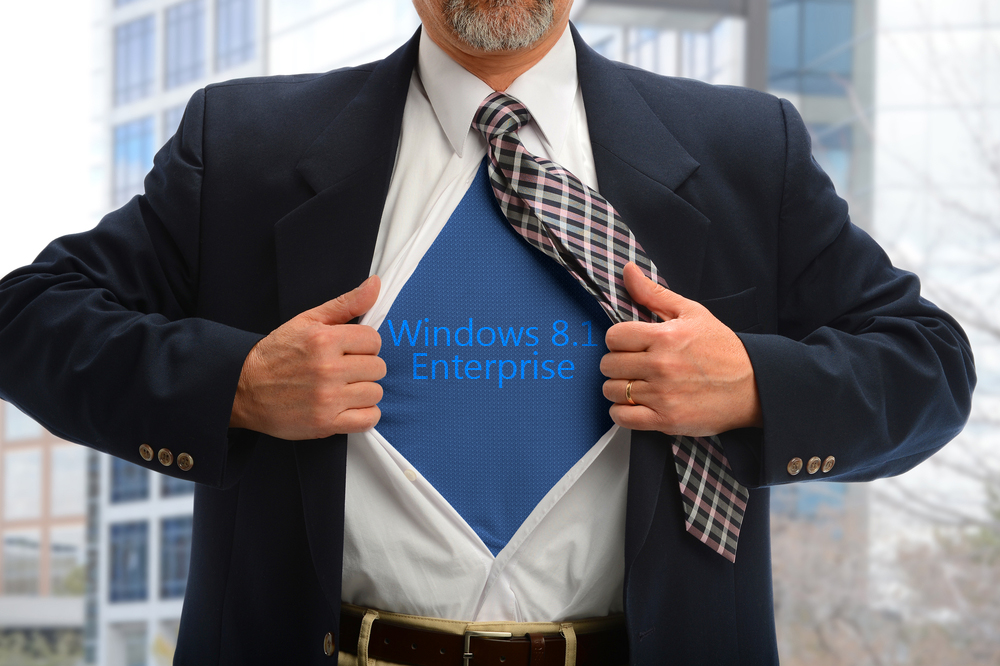
Microsoft rolled out Windows 8.1 Preview for developers and consumers last month, and now the software giant has followed it up with an enterprise edition.
This differs from the standard Preview release in a number of ways, including introducing additional advanced features such as Windows To Go, Start Screen Control and DirectAccess.
Assigned Access, which put in an appearance in the early leaked builds of 8.1 Preview (or Windows Blue as it was back then) but was absent from the official release, also returns. This is a kiosk mode that lets you lock down Windows to a single app.
According to Microsoft, this version of the OS refresh adds "premium features designed to address mobility, security, management and virtualization needs of today’s enterprise".
The list of premium features is as follows:
- Windows To Go Creator: IT organizations can create a fully manageable corporate Windows 8.1 desktop on a bootable external USB drive. The drive can be used to support Bring Your Own Device scenarios or be given to contingent staff to access the corporate environment without compromising security.
- Start Screen Control: IT departments can now control the layout of the Start screen on company-issued devices to ensure key apps are easily accessible. IT departments can also prevent users from customizing their Start screen to ensure consistency across individual workgroups or the entire company.
- DirectAccess: Users can seamlessly access resources inside a corporate network remotely without having to launch a separate VPN. Also, IT administrators can keep remote users' PCs up-to-date by applying the latest policies and software updates.
- BranchCache: Employees in branch offices no longer need to download content multiple times across their Wide Area Network (WAN) as BranchCache caches files, websites and other content from central servers locally on hosted cache servers or PCs.
- Virtual Desktop Infrastructure (VDI): Users will enjoy a rich desktop experience and the ability to play 3D graphics, use USB peripherals and use touch-enabled devices across any type of network (LAN or WAN) for VDI scenarios, thanks to enhancements in Microsoft RemoteFX and Windows Server 2012.
- AppLocker: IT organizations can create a more secure environment by restricting the files and apps that users or groups can run on a PC, increasing the security of the device and the data it holds.
- Windows Enterprise Side-Loading: Internal Windows apps can be side-loaded on domain-joined PCs and tablets running Windows 8.1 Enterprise.
- Assigned Access: This new Windows 8.1 feature lets organizations enable a single Windows Store application experience on a device so the user only experiences the specified application but cannot access other system files and applications.
- Inbox VPN Clients: Windows 8.1 extends the ability to third party VPN providers to include versions of their VPN clients’ inbox. This means that on both x86 and ARM (RT) platforms, vendors can work with Microsoft to include their VPN functionality inbox with Windows 8.1.
- Open MDM: With Windows 8.1, new Open Mobile Alliance Device Management (OMA-DM) capabilities are built into the OS and enable mobile device management using third-party MDM solutions, such as MobileIron or AirWatch, with no additional agent required. Enhanced policies allow administrators to manage more settings from both Windows Intune and the third-party MDM solutions for both Windows 8.1 and Windows RT 8.1.
- Workplace join: Trusted devices running Windows 8.1 are allowed to access secured enterprise data.
- Remote business data removal: Allows personal devices to connect to, access and store company content that can be efficiently removed from the device by IT at a later date while leaving the personal data intact.
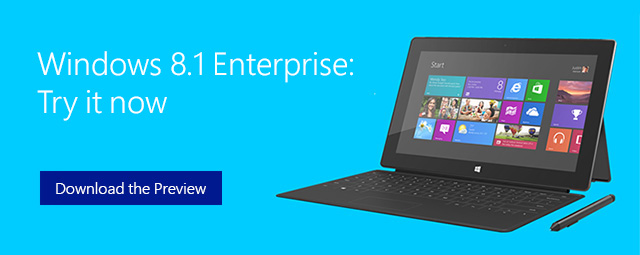
The last five features in the list were announced at TechEd North America back in June. You can find out more about the new features here and download a copy of Windows 8.1 Enterprise Preview here.
The preview is designed to allow companies to get a head start in testing the operating system in their environments. Windows 8 customers have two years to upgrade to Windows 8.1 after the General Availability of the Windows 8.1 update in order to continue to remain supported under the Windows 8 lifecycle. Like the Windows 8.1 Preview this version expires mid-January 2014.
Photo Credit: R. Gino Santa Maria/Shutterstock
-

Windows 8 and RT tablets lagging far behind the competition
Publié: juillet 30, 2013, 1:09pm CEST par Wayne Williams
 Windows 8 is an operating system designed for touch PCs, but it's struggling to find a sizeable audience on them. PCs as we know them are on their way out, and tablets are the future, as we've been told time and again by analysts. Figures from the likes of Gartner and IDC clearly back up this sea change.
Windows 8 is an operating system designed for touch PCs, but it's struggling to find a sizeable audience on them. PCs as we know them are on their way out, and tablets are the future, as we've been told time and again by analysts. Figures from the likes of Gartner and IDC clearly back up this sea change.So if people aren't buying into Microsoft's new OS on regular PCs (with or without touch) then they must be scrambling to buy tablets running Windows 8 and RT surely? Well things don't look too rosy for Microsoft there either.
RT devices are struggling with lacklustre sales and limited backing from hardware partners, and Windows 8 tablets have yet to really take off. According to the latest research from Strategy Analytics, global tablet shipments, including white box (rebadged) devices reached 51.7 million units in the second quarter of 2013, up 43 percent from 36.1 million in Q2 2012.
Android, thanks to high profile hardware partners like Samsung, Amazon and Google itself, was on 34.6 million of the tablets shipped in the quarter, dwarfing Apple's 14.6 million shipments. However, when you strip out the white box tablets (branded tablet shipments accounted for 36.2 million units) the gap between the two leading mobile operating systems is greatly reduced.
Tablets running some form of Windows accounted for just 2.3 million shipments in the quarter.
According to Strategy Analytics' figures, Android tablets secured a 67 percent global share, while Apple iPad lost a significant chunk of market, declining from 47.2 percent in Q2 2012 to 28.3 percent, due in part to the lack of new models, this quarter. And right down in the distance, Microsoft picked up a global share of just 4.5 percent.
Strategy Analytics cites the lack of big name apps as one of the main reasons for low Windows 8/RT market share. "There may be an uptick in Windows RT shipments in Q3 following savage price cuts by all the partners still involved in the RT Market. Microsoft has reduced prices by $150 and other vendors even more; they are still not cheap, but are much more where they should be to compete. The shortage of apps continues to be a problem, with seemingly little incentive for developers to work on the platform".
Photo Credit: ollyy/Shutterstock
-

Government censorship -- no matter how well-intentioned -- can never be a good thing
Publié: juillet 30, 2013, 10:29am CEST par Wayne Williams
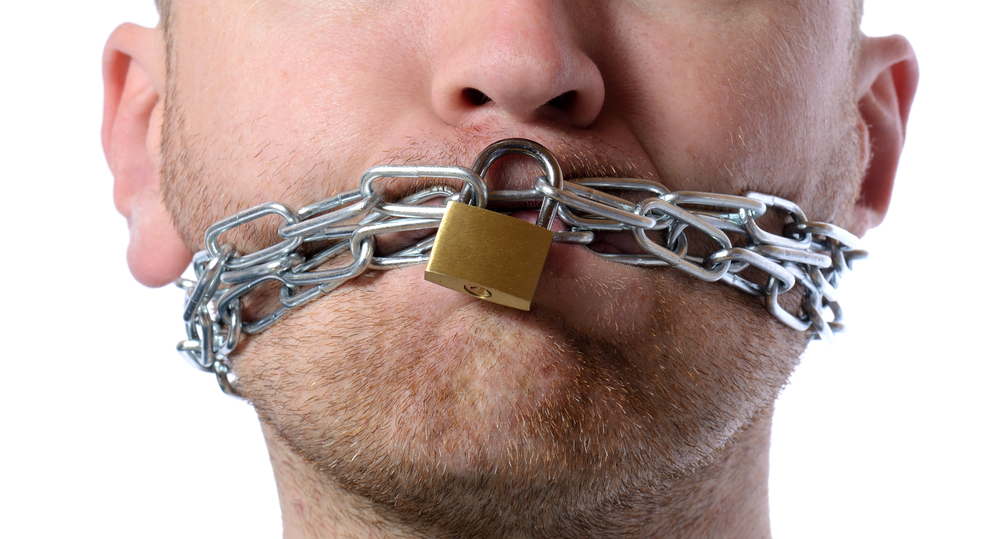
My colleague Mark Wilson wrote an interesting article on Sunday about the futility of ISPs and governments trying to block pornography. If you’ve been following the news you’ll know the UK government intends to make accessing adult content on the internet "opt in". That's perfectly legal adult content by the way -- not just the nasty stuff.
Mark also worried about where such a move could lead, saying, "In filtering out porn, how could I be sure that whoever is doing the filtering is not also blocking access to other things, be it through a sense of morality, or by simply miscategorizing something?" Which, it turns out, could be truer than he knew.
In the comments under Mark’s story, Bruce Fraser said "this entire article is based on misinformation, presupposition and creating fear", adding, "the proposal is about blocking pornography, not taking away human rights. By invoking the 'freedom' language, Mr. Wilson is tugging on our heartstrings, suggesting that this is just the beginning of something much more sinister".
Sadly, if it was just about pornography, then that would be one thing, but it could indeed be the beginning of something much more sinister.
In a blog post titled "Sleepwalking into censorship", digital freedom campaigner the Open Rights Group claims that the "porn" block will extend into other areas -- automatically preventing access to yet more legal (if questionable) material.
According to the group, based on "current mobile configurations and broad indications from ISPs", the proposed parental controls will also pre-select options to ban access to:
- Violent material
- Extremist and terrorist related content
- Anorexia and eating disorder websites
- Suicide related websites
- Alcohol
- Smoking
- Web forums
- Esoteric material
- Web blocking circumvention tools
What's actually pre-selected will, ORG says, vary depending on your ISP.
How true this claim is, I personally don’t know. At this point, no one can say for certain what the block will cover, but the list suggested by ORG is reportedly based on those "used by mobile phone providers today". If the organization’s mock-up is fairly close to how the porn block will work, it will mean if you elect to not allow sexual content on your home computer then you will have to opt in to see the other categories included in the list. And I can’t see parents who say no to porn expressly saying yes to any of those other options. Suicide related websites? Definitely! Anorexia and eating disorder websites -- bring them on!
So suddenly, from not allowing pornography on your family computer, you’re saying no to a whole swathe of other content blocked by the judgment of someone you neither know nor should trust.
As an aside, if you have a teenage child who suffers from depression, and they kill themselves after having accessed a suicide related website that the block failed to cover -- can you sue the ISP and the government for failing in their role as self-appointed guardians of the internet? Because if they’re deciding what we can and can’t see online, are they not ultimately going to be liable if they fail to do their jobs? That’s called negligence, after all. Of course, that is just one of the many problems with the whole ill-thought out idea.
Perhaps even more pressing, once this system is in place, it will be easy for the government and coerced ISPs to add other pre-ticked boxes to the list. What else can they include that is illegal, or might be viewed as unwelcome activity by, say, big business lobbyists? Ah yes, why not block access to sites which contain links to (or information about) copyrighted material, to stop the "kids" getting their parents into trouble by downloading it. After all, no one is going to want to opt out of that one. Untick it -- "Are you sure you want to break the law and risk the police coming round to check for pirated content on your PC? Y/N".
Make no mistake, once UK-wide censorship of any kind is introduced, and made "opt out" we’re going to find ourselves on a very slippery slope and it likely won’t be a problem limited to the UK for very long.
Photo Credit: Rob Hyrons/Shutterstock
-

Microsoft adds child abuse warnings to Bing
Publié: juillet 29, 2013, 9:36am CEST par Wayne Williams
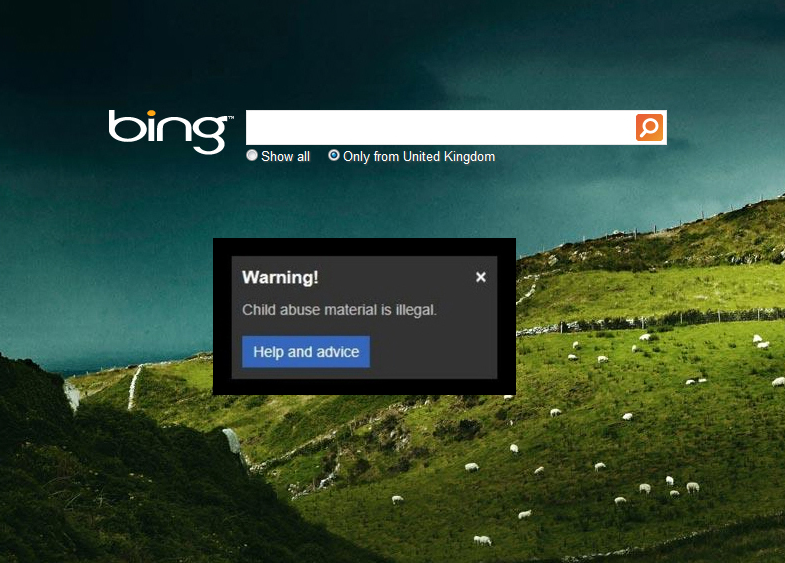
Bing has become the first of the big search engines to display pop up warnings whenever anyone from the UK uses it to look for child abuse images.
When someone enters any of the keywords from the Child Exploitation and Online Protection Centre (Ceop)’s blacklist into the search site a warning will be displayed informing them that "Child abuse material is illegal" and providing help and advice from Stopitnow.org.
The move comes days after the UK Prime Minister David Cameron said internet companies needed to do more to block access to child abuse images. He suggested that the warnings should state that anyone looking for such material risked losing their job, family, and even access to their children, however Bing has decided to skip the Daily Mail approach and keep things simple.
Explaining the introduction of the warnings, a Bing spokesman said, "This is in addition to Microsoft's existing and longstanding policy of removing any verified links to illegal content of this sort from Bing as quickly as possible. Microsoft has been, and remains, a strong proponent of proactive action in reasonable and scalable ways by the technology industry in the fight against technology-facilitated child exploitation. We have teams dedicated globally to abuse reporting on our services and the development of new innovations to combat child exploitation more broadly".
Yahoo is believed to be considering a similar move, but Google currently has no plans to follow suit, preferring to use its own methods for combating child abuse on the web.
-

Microsoft's modern.IE scanning tool goes open source
Publié: juillet 26, 2013, 11:52am CEST par Wayne Williams

Microsoft rolled out Internet Explorer 11 Preview for Windows 7 and Windows Server 2008 R2 yesterday, and also updated modern.IE -- a set of tools and resources designed to make developing for the browser just a little bit easier.
The software giant additionally announced that the modern.IE scanner, which analyzes the HTML, CSS, and JavaScript of a site or application looking for common coding issues, is now open source (under Apache 2.0 license) and available to download from GitHub.
The GitHub page also explains how the scanner works and includes instructions for installation and configuration.
Making the announcement, Microsoft said, "We want the web to move forward. And we want to help web developers spend more time innovating and less time testing... A local scan modern.IE has been available for you to download for testing on the Windows platform since our April update. Today, we announce its release under the Apache 2.0 license and available for you on GitHub so you can have complete confidence in scanning for your intranet, line-of-business web app, authenticated firewall, or super-secret project".
Photo Credit: rvlsoft/Shutterstock
-

Mozilla: Browsers could share your interests with websites
Publié: juillet 25, 2013, 10:06pm CEST par Wayne Williams
 Your web browser records everything you do on the web. It knows where you go, it knows where you’ve been, what your favorite websites are, and it likely even knows your passwords. But fortunately it doesn’t share that information with the world. At least not yet.
Your web browser records everything you do on the web. It knows where you go, it knows where you’ve been, what your favorite websites are, and it likely even knows your passwords. But fortunately it doesn’t share that information with the world. At least not yet.Mozilla, the non-profit behind Firefox, is proposing to change that. The organization wants your browser to be able to tell websites the sort of things you’re into, allowing those sites to serve up personalized content tailored just for you.
If the very idea strikes fear into your soul, don’t worry. Mozilla understands that kind of personalization needs to be handled with respect for the user, so the idea is the browser will match your browsing history to broad categories, like technology, sports and cooking. Your browsing history isn’t shared with sites you visit -- it never leaves your computer in fact -- instead the browser just tells specific sites what you like (technology, sports and cooking), and those sites can then prioritize stories which match.
This way, if you secretly quite like One Direction, you don’t have to worry about being bombarded with stories about the boyband. Instead, your browser will just tell the sites you visit that you like "music" (even though you clearly don’t).
Justin Scott, Product Manager at Mozilla Labs explains in a blog post how the suggested system would work. "As I browse around the Web, I could choose when to share those interests with specific websites for a personalized experience. Destinations like the Firefox Marketplace could recommend recipe and movie apps, even if it’s my first time visiting that site. And, as a user, I would have complete control over which of my interests are shared, and with which websites".
Mozilla has begun testing this concept with volunteer participants to "learn how they respond to the idea of sharing their interests on their own terms in order to see personalized content", and so far, Scott says, the results are promising.
At this stage it’s just a proposal, but it’s certainly an intriguing one. What do you think of the idea? Leave your comments below.
Photo Credit: murielbuzz/Shutterstock
-

Watch Google’s 'mystery' product announcement live
Publié: juillet 24, 2013, 5:37pm CEST par Wayne Williams
Google is making an announcement regarding a new device today. No one outside of the giant tech corporation has any clue what it might be. No one I tell you. Not a single solitary person anywhere. Except maybe Best Buy.
Of course that leak might just be a total co-incidence. Google could in fact be preparing to announce Hat -- a mind reading/recording device for the head. Or something entirely different.
Whatever Google is announcing, the company will be live streaming it and you’ll be able to watch the full reveal here very soon…
The live stream starts at 9am PT/12pm ET/5pm BST.
Place your bets as to what you think the new product might be.
-

Apple’s Q3 flat earnings show how much it needs new products
Publié: juillet 24, 2013, 10:50am CEST par Wayne Williams
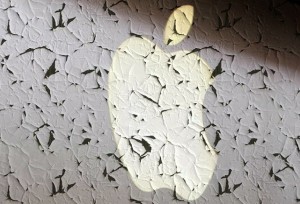 For the past decade, Apple has posted year-over-year revenue growth every quarter. The company announced its Q3 2013 earnings yesterday, posting revenue of $35.3 billion. While that beats the $35 billion posted in the same quarter a year ago -- it’s a tight 1 percent growth this time around.
For the past decade, Apple has posted year-over-year revenue growth every quarter. The company announced its Q3 2013 earnings yesterday, posting revenue of $35.3 billion. While that beats the $35 billion posted in the same quarter a year ago -- it’s a tight 1 percent growth this time around.Apple also reported a net profit of $6.9 billion, down from a net profit of $8.8 billion in the same quarter last year. However, average sale prices are lower now, at $581, compared with $608 a year ago.
Apple said it sold 31.2 million iPhones, a record for the June quarter, compared to 14.6 million this time last year.
The company also saw its first ever year-over-year decline in iPads, having sold 14.6 million during the quarter, compared to 17 million in the year-ago quarter (down 14 percent). Apple hasn’t launched any new iPads this year, and the market has had time to settle down, explaining some of the drop. The wide range of tablets from other tech firms will likely have had some impact also.
The company sold 3.8 million Macs this quarter, compared to 4 million in the year-ago quarter.
For Apple's fiscal fourth quarter of 2013, the firm is forecasting revenue between $34 billion and $37 billion.
"We are especially proud of our record June quarter iPhone sales of over 31 million and the strong growth in revenue from iTunes, Software and Services," Tim Cook, Apple’s CEO said. "We are really excited about the upcoming releases of iOS 7 and OS X Mavericks, and we are laser-focused and working hard on some amazing new products that we will introduce in the fall and across 2014".
Apple’s now slowing revenue growth was originally fuelled by the launch of the iPad and backed up by the iPhone’s phenomenal success. Both products were launched with perfect timing, when there was nothing like them on the market. But in recent quarters, Apple has faced increasingly stiff competition, and had only variations of existing products -- the iPad mini being the prime example -- to offer in reply. This has been enough to keep the good ship Apple stable, but isn’t enough to support the rocketing growth the company has been enjoying. For that, Apple will need those "amazing new products" Tim Cook mentioned.
-

The Ask Toolbar is another reason to avoid Java
Publié: juillet 23, 2013, 12:36pm CEST par Wayne Williams
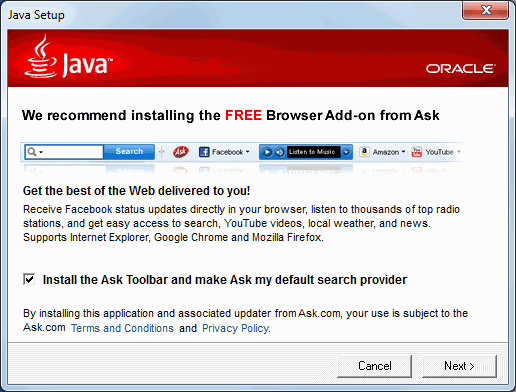 I love free software but I’m not a huge fan of all the junk that often gets bundled with programs -- toolbars and the like -- or the changes that the software sometimes wants or tries to make to my search provider. The order, as far as I’m concerned, should always go like this -- Google first, Bing second, Ask never. But so long as the extras are clearly labeled, can be deselected without problem, and easily uninstalled afterwards if I accidentally miss one, I don’t have a real issue with this bundling. It provides a way to get the software for free and funds future development.
I love free software but I’m not a huge fan of all the junk that often gets bundled with programs -- toolbars and the like -- or the changes that the software sometimes wants or tries to make to my search provider. The order, as far as I’m concerned, should always go like this -- Google first, Bing second, Ask never. But so long as the extras are clearly labeled, can be deselected without problem, and easily uninstalled afterwards if I accidentally miss one, I don’t have a real issue with this bundling. It provides a way to get the software for free and funds future development.However, I’m a savvy computer user and as part of my job I install and uninstall a lot of free software, so I know what to look out for. For the less technically astute, it’s easy to get caught out and end up installing a lot of crap you don’t want. Which takes me to the point of this article -- Oracle and the Ask Toolbar.
The only reason anyone uses Ask now is because a piece of software installed the search toolbar on their computers and they haven’t realized, or don’t know how to get rid of it. A lot of software comes with the Ask Toolbar bundled, but according to Soluto in a new blog post, 40 percent of all Ask installations come from a Java install or update.
Soluto says Java is installed on 70 percent of all browsers and because the software is so notoriously insecure, critical security fixes come thick and fast. Every time it’s updated, users have to pay careful attention to make sure they don’t end up with the Ask Toolbar.
Soluto claims 30 percent of all its users have had the toolbar installed on their computers at some point, and according to the company "The fact 59 percent of Soluto users choose to disable Ask.com toolbar for their customers shows how hated a piece of software this is. We believe most of the remaining 41 percent simply haven’t gotten to it yet". A survey asking Oracle to stop bundling the Ask Toolbar with the Java installer has to date garnered 16,702 signatures.
Soluto's blog post is timely for me, as at the weekend I removed Ask Toolbar from my in-laws computers (it was on two of them) and both came from Java updates at some point in the past. I removed Java at the same time as the toolbar.
The Ask addition is a nuisance. As Soluto explains "The toolbar takes over the browser’s default search provider and replaces it with the Ask.com search engine. Ask’s search is clearly inferior to Google’s search, giving users lower-grade search results and bombarding the user with banner ads, video ads, and in general a poor experience. It also tries to hijack the default homepage and depending on the browser -- it often succeeds".
When you install or update Java, if you forget to untick the Ask Toolbar option you won't be able to uninstall it immediately because the crapware idles around for ten minutes or so, pretending not to exist before installing silently in the background.
I think out of all the unwanted programs I’ve had to remove from friends and family’s PCs, it’s this which is now at the top of the list.
Have you had similar problems with the Ask Toolbar, or is there a worse example you’ve found (Conduit, Babylon, etc.) feel free to vent about crapware in the comments below.
-

Pornography to be 'opt in' in the UK -- do you agree with the move?
Publié: juillet 22, 2013, 10:10am CEST par Wayne Williams
 Yesterday my colleague Mark Wilson wrote an excellent article discussing online pornography and the problems of policing it. This came in the wake of UK Prime Minister David Cameron calling for internet companies to do more to block porn on the web.
Yesterday my colleague Mark Wilson wrote an excellent article discussing online pornography and the problems of policing it. This came in the wake of UK Prime Minister David Cameron calling for internet companies to do more to block porn on the web.Today, Cameron announces that every British household will have pornography automatically blocked by their internet provider, although customers can choose to switch off the "family friendly" filters if they so choose.
Violent pornography depicting rape will become illegal in England and Wales (it is already illegal in Scotland). Search engines will also have to introduce measures to prevent access to illegal content, with warnings popping up when anyone from within the UK tries to search for such material. Cameron suggests these warnings should tell searchers they run the risk of "losing their job, their family, even access to their children", by trying to view this content.
According to Cameron, "I feel profoundly as a politician, and as a father, that the time for action has come. This is, quite simply, about how we protect our children and their innocence". Which is interesting, as I feel profoundly as a citizen, and as a father, that the government should stay out of areas where it has no business being and leave parenting to the parents.
Giving mothers and fathers an easy way of blocking access to pornography is as far as things need to go. Blocking porn for all, and forcing people who want to view such material to opt in, is wrong. There are plenty of single men and women out there without children -- why should they have to expressly tell their ISPs they enjoy pornography? An act that will, naturally, see them added to a "list". And will the ISPs send out confirmation letters or emails once the filters have been turned off? That will result in more than a few awkward conversations between husbands and wives I’ll bet.
I’m all for protecting children from the darker aspects of the internet, and appreciate there are plenty of parents who wouldn’t have the first clue how to limit access to pornography, and/or have no idea at all what their children get up to online -- but there are better ways to tackle the problem of pornography than a total ban.
Of course ISPs will only block access to porn sites, downloaders will still be able to get their fix via other methods won’t they? I mean, who pays for porn anyway? Ah, but in the UK ISPs already block access to a growing number of "copyright infringing" sites like the Pirate Bay, so that already reduces the options...
I'd be interested to know what you think about this new development, so here's a quick poll.
Note: There is a poll embedded within this post, please visit the site to participate in this post's poll. -

Spanning Backup for Google Apps gains key new features
Publié: juillet 19, 2013, 10:47am CEST par Wayne Williams
 As if moving to shiny new headquarters in Austin, Texas, wasn’t enough to keep the firm busy, Spanning Cloud Apps has just added a raft of features to Spanning Backup for Google Apps, its enterprise-class data protection solution.
As if moving to shiny new headquarters in Austin, Texas, wasn’t enough to keep the firm busy, Spanning Cloud Apps has just added a raft of features to Spanning Backup for Google Apps, its enterprise-class data protection solution.The Spanning Backup Summer ’13 Release adds functions designed to help large organizations protect, manage and repair their Google Apps data, handle large user bases, and comply with complex regulatory and policy requirements.
The additions include:
- Email retention policy enforcement -- Reduces the management costs and security risks of retaining old emails and enables administrators to specify exactly how long backed-up email will be retained. Users can also label key terms to be excluded from the deletion process, ensuring vital emails are available indefinitely.
- Auto-add licenses -- Eliminates the headache of manually adding and assigning licenses for new users by providing automatic assignment of available licenses to users added to a Google Apps domain.
- Named administrators -- Enables organizations to choose which users can be administrators of Spanning Backup, regardless of their Google Apps rights.
- Large domain support -- Enhances the usability of Spanning Backup for administrators of large domains. Users can navigate huge amounts of information with paging controls and type-ahead to quickly find the item of interest.
- Spanning Backup knowledge base -- Serves as a deep resource for end-users where they can review detailed information, articles, white papers and videos for training and troubleshooting tips.
According to Charlie Wood, CEO, Spanning: "We are seeing increasing numbers of very large-scale organizations, including global companies and educational institutions, migrate to Google Apps at an increased pace. In addition to enterprise-class, long-term backup and recovery, the new features address critical pain points that plague organizations when they are managing thousands or tens of thousands of users".
Photo Credit: Andreas Weitzmann/Shutterstock
-

British women enjoy fondling 7 inchers (and larger)
Publié: juillet 18, 2013, 6:17pm CEST par Wayne Williams
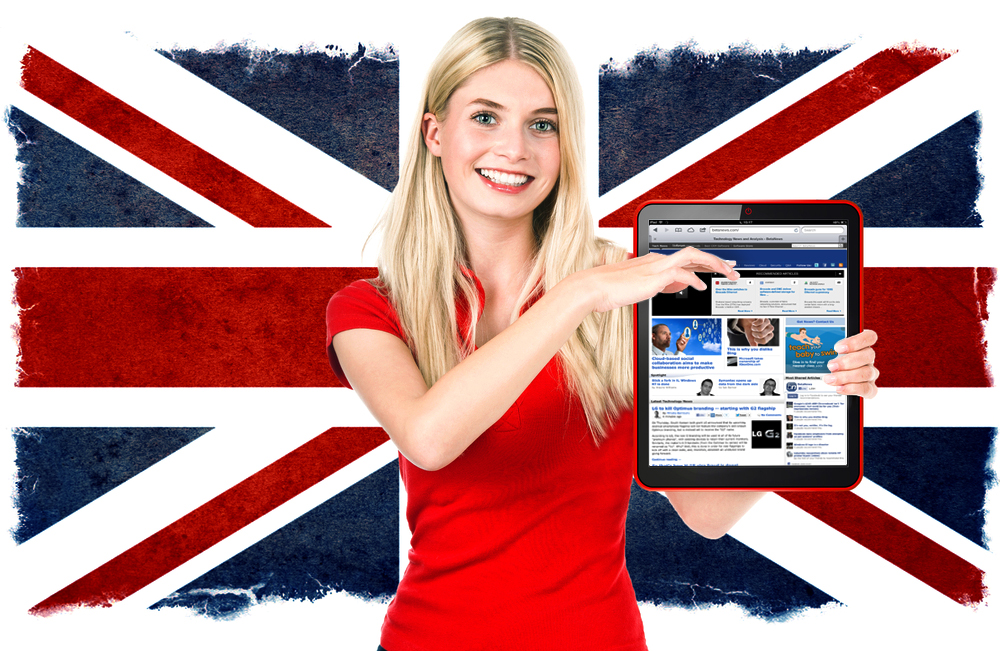
According to YouGov's latest Tablet Tracker report there are more women owning tablets than men in the UK. The study says that in May, 52 percent of the country's touchscreen computers were in female hands, an increase of nine percent compared with the same time last year.
Over the same period, the share of tablets owned by men fell from 57 percent to 48 percent. There’s no equivalent report for female tablet ownership in the US, but I wouldn’t be surprised to see it following a similar trend. Tablets are ideal for women.
The beauty of devices like the iPad is you don’t need to know anything about technology to use them. They make it easy to do all the tasks a casual computer user would want to do -- check and send email, browse the web, use Facebook and Twitter, and play games. There’s no need to find and download new programs from the web, everything is within easy reach in the App Store.
While men care about things like processors, RAM, storage space, and operating systems, women are -- and this is a huge sweeping generalization bordering on sexism I know -- far less interested in such matters. They just want something that does what they want it to. This is reflected in YouGov’s data which shows that the increase in female ownership primarily comes from older Apple devices (women own 60 percent of iPad 1s and 2s) and the handbag-sized iPad Mini (58 percent).
The report also shows that 22 percent of the adult British population now own a tablet (up from 18 percent). Of those who don’t yet own one, 19 percent are considered likely to purchase a device soon, with a third of those potential buyers being women.
Summing up, John Gilbert, Lead Director at YouGov Technology & Telecoms, says: "The early adopters of tablets have typically been affluent males. As they buy the latest models, they have placed their old devices on to the secondary market or give them to other members of their household. A growing number of females and under-35s own older tablets, such as the iPad 1 and 2 while affluent males have the more recent iPad 3 and 4 and Samsung devices. Add to this the fact that it is women and young people driving the popularity of iPad Mini in the UK and it is clear where the surge in tablet ownership among females and under-35s comes from".
Photo Credit: LiliGraphie/Shutterstock
-

Microsoft takes ownership of XboxOne.com
Publié: juillet 18, 2013, 10:04am CEST par Wayne Williams
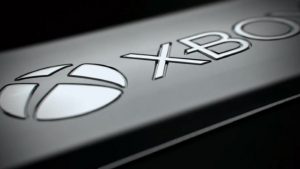 The first time we heard the name of Microsoft’s forthcoming next gen console was when the company announced it at the reveal back in May. Part of the reason for keeping it so successfully under wraps was that Microsoft didn’t register any domain names in advance.
The first time we heard the name of Microsoft’s forthcoming next gen console was when the company announced it at the reveal back in May. Part of the reason for keeping it so successfully under wraps was that Microsoft didn’t register any domain names in advance.Unfortunately for Microsoft, XboxOne.com and XboxOne.net were already taken. Unfortunately for the owner of those domains -- an individual living in the UK who had owned both since 2011 -- Microsoft wanted them.
The tech giant filed a dispute with the National Arbitration Forum (NAF) in late May and now both of those domains belong to Microsoft. You can see this for yourself by checking the WHOIS record for XboxOne.com.
Microsoft’s success at winning the domains comes as no surprise. The firm has a history of this kind of thing, and although XboxOne.com had been used for Xbox-related news early on, both it and XboxOne.net were currently dormant, so an easy target. It’s not currently known if Microsoft paid any money to the previous owner to ease the speed of the transition.
-

Microsoft seeks to tie TVs, tablets and smartphones together to create the 'Companion Web'
Publié: juillet 17, 2013, 4:35pm CEST par Wayne Williams
Microsoft is today launching a new initiative called the "Companion Web" which is designed to bridge the gap between the various different internet enabled devices we already use in conjunction with one another.
As Bryan Saftler, Senior Product Manager, Internet Explorer explains, "more than 80 percent of smartphone-owning Americans use [their handsets] while watching TV. Of those smartphone users, 4 out of 5 use their phone to look up content relevant to what they’re watching". Microsoft feels this manual seeking of information could be replaced with a more cohesive, tailored and engaging experience.
"The majority of sites on the web are built for only one device at a time", Saftler says. "And while we move between our multiple screens, we have to do the work to piece together a unified experience. But what if we didn’t have to search on our tablet when we saw something interesting on TV, but instead the information we were looking for came to us? Content owners are starting to connect the dots, and they’re doing so through the Companion Web".
The idea grew from the success of Xbox SmartGlass which lets you use a mobile phone or tablet as a second screen so you can interact and engage with media in your living room using your Xbox 360. The Companion Web takes that idea and runs with it -- going far beyond just a simple second screen.
To provide an early idea of what’s possible, Microsoft has teamed up with Polar to create a Companion Web experience that offers consumers the chance to participate in and vote on content relevant to what they’re watching. In Windows 8, you snap IE to the side of the screen while you watch a video, and connect your smartphone by scanning in a QR code. Watch the example video below to find out more.
This isn’t the only example. Over the past six months, the IE team has also experimented with multi-screen scenarios with other partners. Nokia Music Mix Party allows numerous individuals to influence a music playlist together at a party through their phones, while DailyBurn uses a smartphone or tablet to control workouts playing on the television.
It’s certainly an intriguing idea, and today’s announcement is just the start of it. The Companion Web’s success will depend on the right companies embracing the idea, but there are lots of possibilities here. Imagine watching a program on your Xbox 360 or Xbox One, for example, firing up Twitter on your mobile phone and immediately seeing what other people are saying about it. Or going to Amazon and being offered box sets of earlier seasons. Who is that actor? Launch IMDB and browse the cast list that appears straightaway.
It’s not just about television of course. As Saftler says "Companion Web means you’ll seamlessly move from one device to the next, interacting with your photos, videos, music, movies, television shows, files, and more".
What do you think of the idea? Long overdue or destined to fail?
-

The new Google Maps arrives on iPhone and iPad
Publié: juillet 17, 2013, 11:51am CEST par Wayne Williams
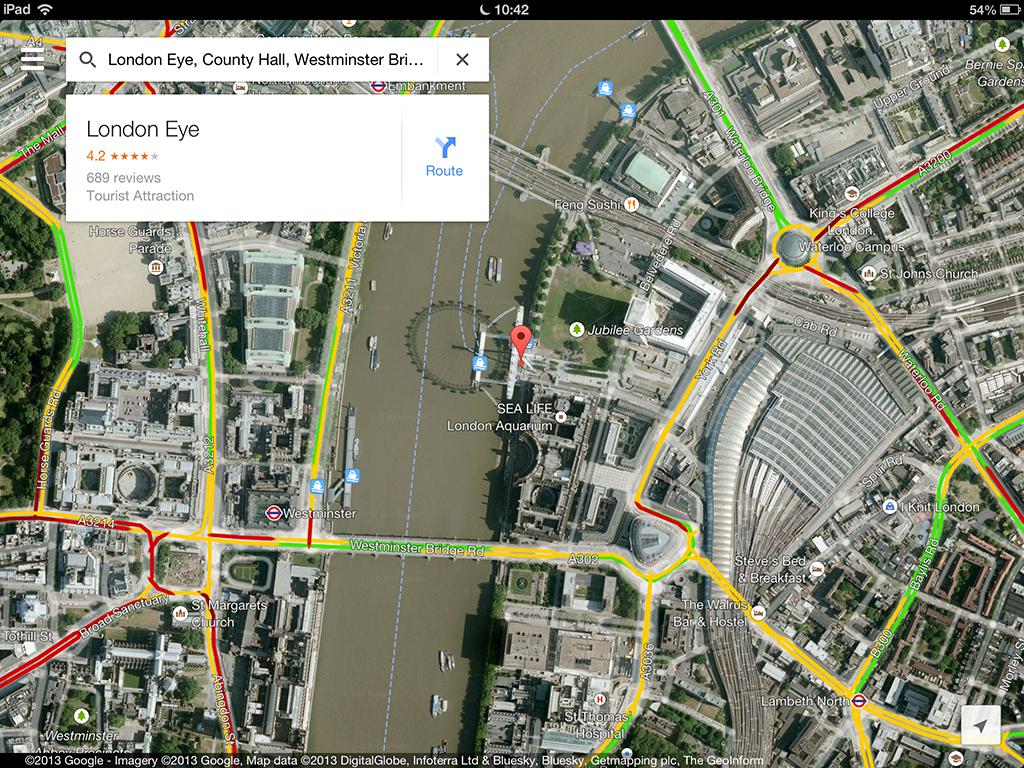
Google showed off a new version of Google Maps for the web at its I/O conference back in May, but made the updated preview invite only. Yesterday, the search giant finally opened up the new Maps to all -- no sign up required. Just go to Google's Explore Maps page, click the Try Now button, and you’re ready to start using it.
In addition to that, a week after Google rolled out a "new mapping experience" for Android smartphones and tablets, the firm has updated its app for iOS devices, introducing the same enhanced search and navigation features, as well as an optimized iPad design.
As much as I liked the old Google Maps on iOS (introduced back in December as an antidote to the awful Apple Maps), the absence of an iPad version was always something of an annoyance. 2x the iPhone interface just wasn’t the same.
Fortunately, the iPad design in the update shows Maps off the way it should be shown off. All the features you’d expect to see are there, including Street View, and it looks great on the larger high-res screen.
As for the other features, the enhanced navigation lets you view live incident reports on road closures, construction, accidents and so on, alongside the usual voice guided, turn-by-turn navigation, and live traffic conditions. There’s also schedule information for more than one million public transit stops around the world.
Bike riders now get turn-by-turn directions and voice guided navigation for more than 330,000 miles of trails, paths, and bike lanes, and the new Explore feature shows you places to eat, drink, shop, play, and sleep nearby. The app features a new 5 star rating system for restaurants, bars and cafes too, with the Zagat badge of excellence and curated lists integrated directly into search results.
The app is available to grab from the App Store now.
-

Acer introduces the Aspire Z3-605 Series desktop, with Harman Kardon speakers
Publié: juillet 17, 2013, 10:23am CEST par Wayne Williams
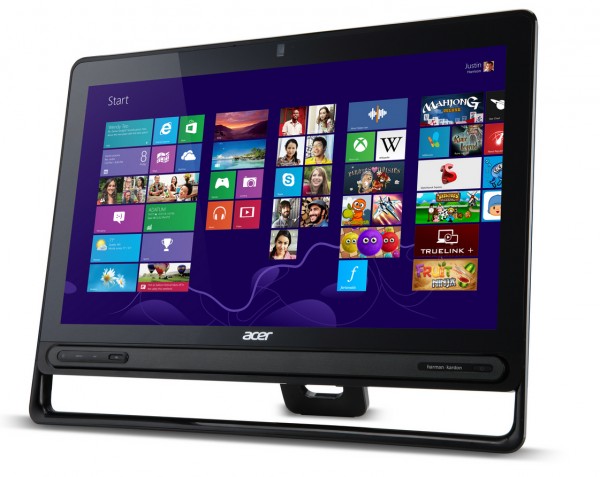
Listening to music or watching movies on your PC can be a slight disappointment if the audio equipment isn’t as good as it could be. So with that in mind, Acer has developed a new all-in-one desktop system with two 3W front-facing Harman Kardon speakers built-in.
According to Acer, the speakers "leverage thorough and precise scientific methods to accurately produce crystal-clear audio that’s as close to the original recording as possible". The sound quality is further improved with the addition of Dolby Home Theater v4 optimized digital output technologies.
The Acer Aspire Z3-605 Series desktops run Windows 8 and come with a 23-inch Full HD IPS display and an ergonomic frame that tilts from 10 to 30 degrees, to give you the best angle for working or watching a movie. Some models also offer 10-point touch technology and hand recognition software so you can use gestures to execute common commands. I have a couple of hand gestures I like to use with my existing PC when it starts misbehaving, but I’m not sure those ones will be recognized by the Z3-605.
The systems come with (up to) an Intel Core i5 processor, 8GB DDR3 dual-channel memory and a 1TB hard drive. Other features include a 1MP HD webcam capable of 720p image capture, HDMI port, two USB 3.0 ports and two USB 2.0 ports, integrated SuperMulti DVD drive, and SD card reader.
Announcing the new systems, Frank Chang, director of desktop product management for Acer America said, "Integrating Harman Kardon speakers is an important milestone and showcases Acer innovation and technology leadership. Acer is the first in the market to bring Harman Kardon premium sound to a mainstream all-in-one desktop, setting a new standard. The Aspire Z3-605 delivers a dynamic, high-quality audio experience for music and movie lovers and furthers convenience and comfort with an ergonomic and adjustable frame and webcam".
The Acer Aspire Z3-605 Series all-in-one desktops are available at leading retailers in the US now. Prices start from $699.99 without touch, rising to $799.99 with touch.
-

Watch Microsoft try to kill Surface
Publié: juillet 16, 2013, 6:22pm CEST par Wayne Williams
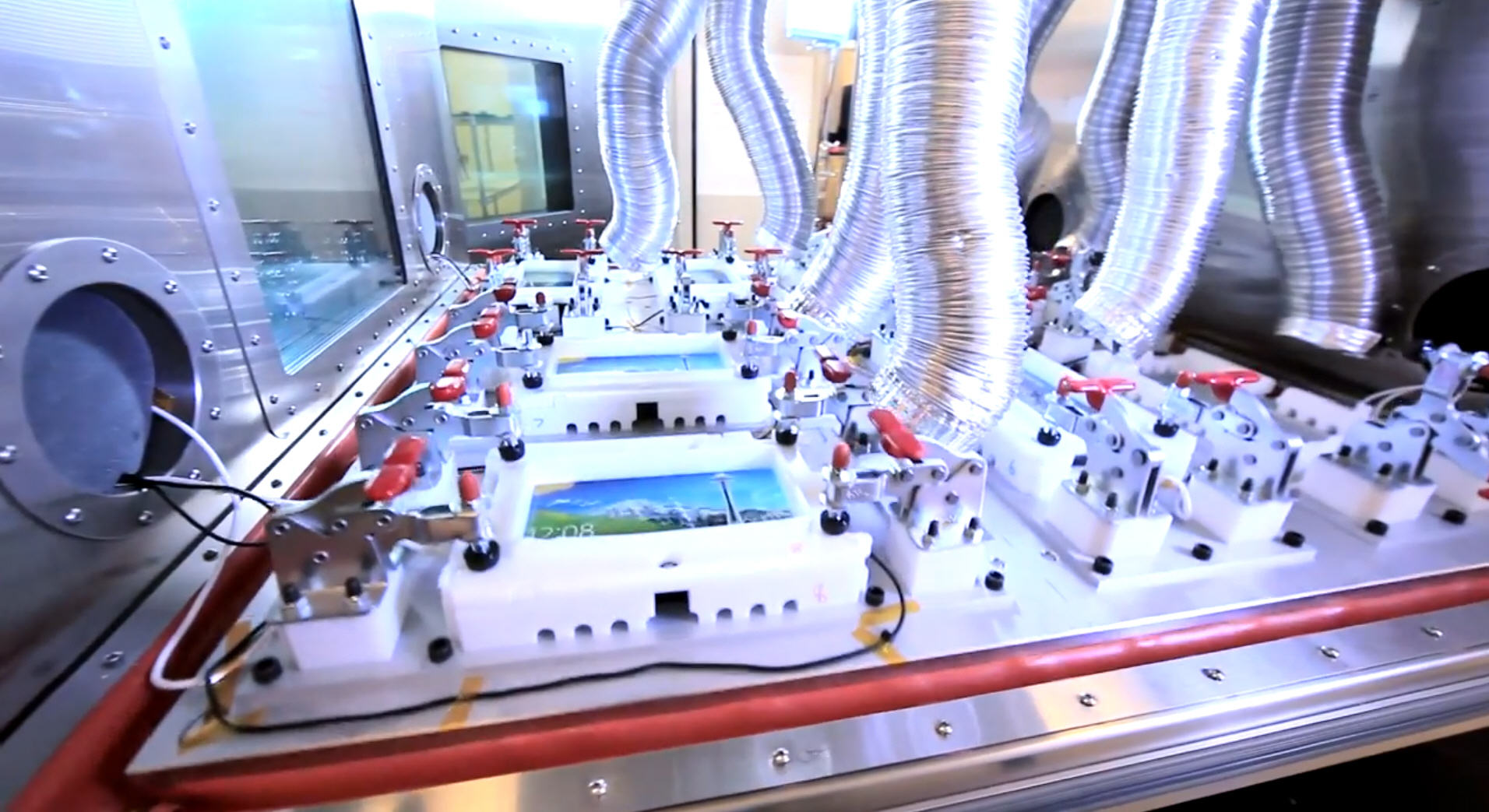
The Microsoft Reliability Lab is where the tech giant tests its hardware to the limits, dropping devices, soaking, smashing and bending them, in a quest to find out where the weaknesses lie.
In the latest episode of Microsoft’s regular "On the Whiteboard" series, presenter Pamela Woon takes a look inside the Reliability Lab as Microsoft does its best to try and destroy a whole bunch of Surface PCs.
According to Jonathan Lehl, test engineer, the labs are by far one of the most secret buildings on Microsoft’s campus. "We control our access to this building very heavily," he says in the video. "We have testing going on that we do not let the public know about". Well, until now presumably.
Ben Reed, who works on Surface certainly seems to enjoy his job, saying of the labs, "You know I think about this facility kind of like a medieval dungeon, where each room has a device that is a torture chamber with a different torture in each one. In some they’re being dropped, in others they’re being put through extreme temperatures… I think I’d be pretty frightened if I was a device and I was in this building".
Some of the tests shown include Surface tablets being used as bowling pins, being driven over by a car, and of course being dropped.
It all looks like great fun, even if there’s a fair bit of fiction mixed in with the reality of the stress testing that goes on behind those closed doors.
-

The great Yahoo email address gold rush begins -- stake the claim for your name today
Publié: juillet 16, 2013, 1:57pm CEST par Wayne Williams
 A month ago Yahoo announced plans to offer up old email addresses that have been inactive for a year or longer. My colleague Brian Fagioli pointed out the worrying privacy flaws of such an undertaking, but Yahoo says it’s confident its plans won’t compromise user security. Hopefully that’s true.
A month ago Yahoo announced plans to offer up old email addresses that have been inactive for a year or longer. My colleague Brian Fagioli pointed out the worrying privacy flaws of such an undertaking, but Yahoo says it’s confident its plans won’t compromise user security. Hopefully that’s true.If you want to try and claim a recycled Yahoo username/email address -- your own name without a ridiculous string of numbers after it, for example, or something else entirely -- you can now register your interest with Yahoo.
Just go to the Yahoo Wish List, and enter your choice of Yahoo usernames in order of preference, and your contact info, and then hit the Submit button. You have until 7 August to do this, but of course the sooner you stake your claim, the greater the chance of getting the email address you desire -- assuming of course it’s one of the names being freed up by Yahoo. Although the firm is releasing hundreds of thousands of usernames, it’s still statistically unlikely your choice will be one of them, but try it anyway.
If you’re successful and are first in line for the username you requested, Yahoo will email you a link to claim it in mid-August. After that, you’ll be able to add usernames to a watch list so you're the first to know when they become available.
Should you happen to enter a name that isn’t in use, you’ll be able to claim it immediately.
And before you think about claiming a whole bunch of usernames for selling on, Yahoo has put in some security blocks to prevent this kind of activity.
Photo Credit: Andrey Burmakin/Shutterstock
-

Microsoft slashes the price of Surface RT -- will it be enough to tempt buyers?
Publié: juillet 12, 2013, 11:33am CEST par Wayne Williams
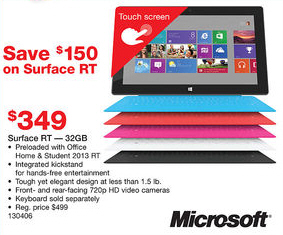 Rumors that Microsoft was planning to cut the price of Surface RT have been swirling for a couple of days, and yesterday they came true. Staples in the US is currently advertising the 32 GB base model of the device for $349.99, a drop of $150. Although the price reduction hasn’t been seen elsewhere yet, it should start appearing at other retailers next week. No word on whether the reduction will be offered in other territories.
Rumors that Microsoft was planning to cut the price of Surface RT have been swirling for a couple of days, and yesterday they came true. Staples in the US is currently advertising the 32 GB base model of the device for $349.99, a drop of $150. Although the price reduction hasn’t been seen elsewhere yet, it should start appearing at other retailers next week. No word on whether the reduction will be offered in other territories.The price cut is interesting as it’s yet another example of Microsoft offering aggressive discounts on Surface RT. The 32 GB version was made available to schools and universities for $199, and attendees at the Worldwide Partner Conference and TechEd gatherings were offered Surface RT 64 GB with touch cover for $99 (although admittedly they had to pay a fortune for a ticket in the first place).
This new price point could well help to drive sales now that Microsoft’s Surface reseller program is in place and the tablet has an expanded presence in Best Buy and similar stores, but that may not be the full story.
At WPC 2013 (where incidentally, Microsoft sold over 16,000 of its majorly discounted Surface RT and Pro tablets in the first two days alone) the company’s COO Kevin Turner showed a product roadmap that confirmed new versions of both Surface RT and Pro are planned. With replacement tablets incoming (likely powered by either Intel's new Haswell processor or Qualcomm’s Snapdragon 800 CPU) it makes sense to try and shift some of the old stock now.
Surface RT has had something of a rough ride. The initial commercials sold it as a tablet that clicks, but failed to mention much else besides, there were complaints about how much storage was actually available to users, and distribution was extremely limited. Microsoft did a pretty lousy job of telling people what Windows RT actually is, which didn’t help either. It’s a shame really, as while it’s (obviously) not a patch on its Pro sibling, Surface RT is still a fine product.
Interestingly, when Microsoft first started taking pre-orders for Surface RT nine months ago, my colleague Joe Wilcox asked "Will you buy Surface RT?" Of the 2,753 people who responded to the poll, just under 26 percent said they had already pre-ordered the tablet, or planned to do so; 20 percent said they intended to pick one up within three months of release; nine percent said they’d get one in six months, and a further 7 percent said they’d get one, but not any time soon.
In other words, over 60 percent claimed they would be buying the tablet. I wonder how many of those positive responses translated into actual sales?
Will the new price point persuade you to pick up Surface RT, if you haven’t already?
-

Who needs gamers? Microsoft targets small businesses with the Xbox One
Publié: juillet 11, 2013, 1:59pm CEST par Wayne Williams
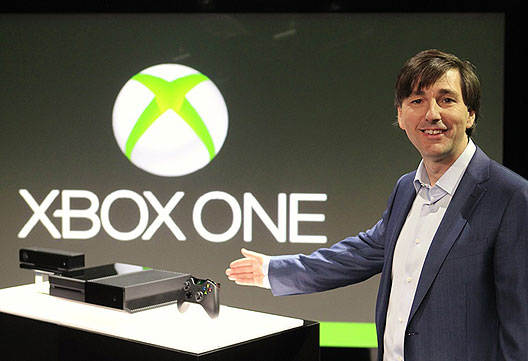 When Microsoft revealed the Xbox One two months ago it pushed the next generation console’s entertainment features, playing down the device’s gaming prowess. The message was clear. The Xbox One is an entertainment hub that can do games, not a games console in the traditional sense.
When Microsoft revealed the Xbox One two months ago it pushed the next generation console’s entertainment features, playing down the device’s gaming prowess. The message was clear. The Xbox One is an entertainment hub that can do games, not a games console in the traditional sense.Microsoft is pursuing an audience outside its (once) loyal gaming community, and having targeted non gamers with talk of TV shows and music, the obvious next step is to pitch the Xbox One as a full blown business system, right? Wait, what?
In an official blog post, Microsoft claims, "it's entirely justifiable to make the Xbox One a business expense", explaining the $499 device is "an affordable option for small business owners, as there are many features built into the console that could help it rival even the most modest of video conferencing and networking platforms".
The features that make the Xbox One such a must-have for the modern office include Skype, SkyDrive, Wi-Fi Direct, Internet Explorer and Office Web Apps, as well as the rather speculative sounding "Future Applications".
Skype on the Xbox One, Microsoft explains, not only allows for "multi-person chatting" but combined with the wide-angle lens and 1080p view of the included Kinect "you have the means for collaborative meetings and presentations".
SkyDrive makes the Xbox One ideal for displaying photos and videos, accessing documents, and again giving presentations.
As for those "Future Applications?" Microsoft explains, "The app story of Xbox One has yet to be written, therefore it is entirely possible to find apps down the road that could be of benefit for you and your business. With the processing power, snap mode, and connection to a large screen, that the Xbox One has, this device is capable of going from the 'break room' to the 'board room'".
-

Qualcomm imagines a world without mobile phones
Publié: juillet 11, 2013, 12:36pm CEST par Wayne Williams
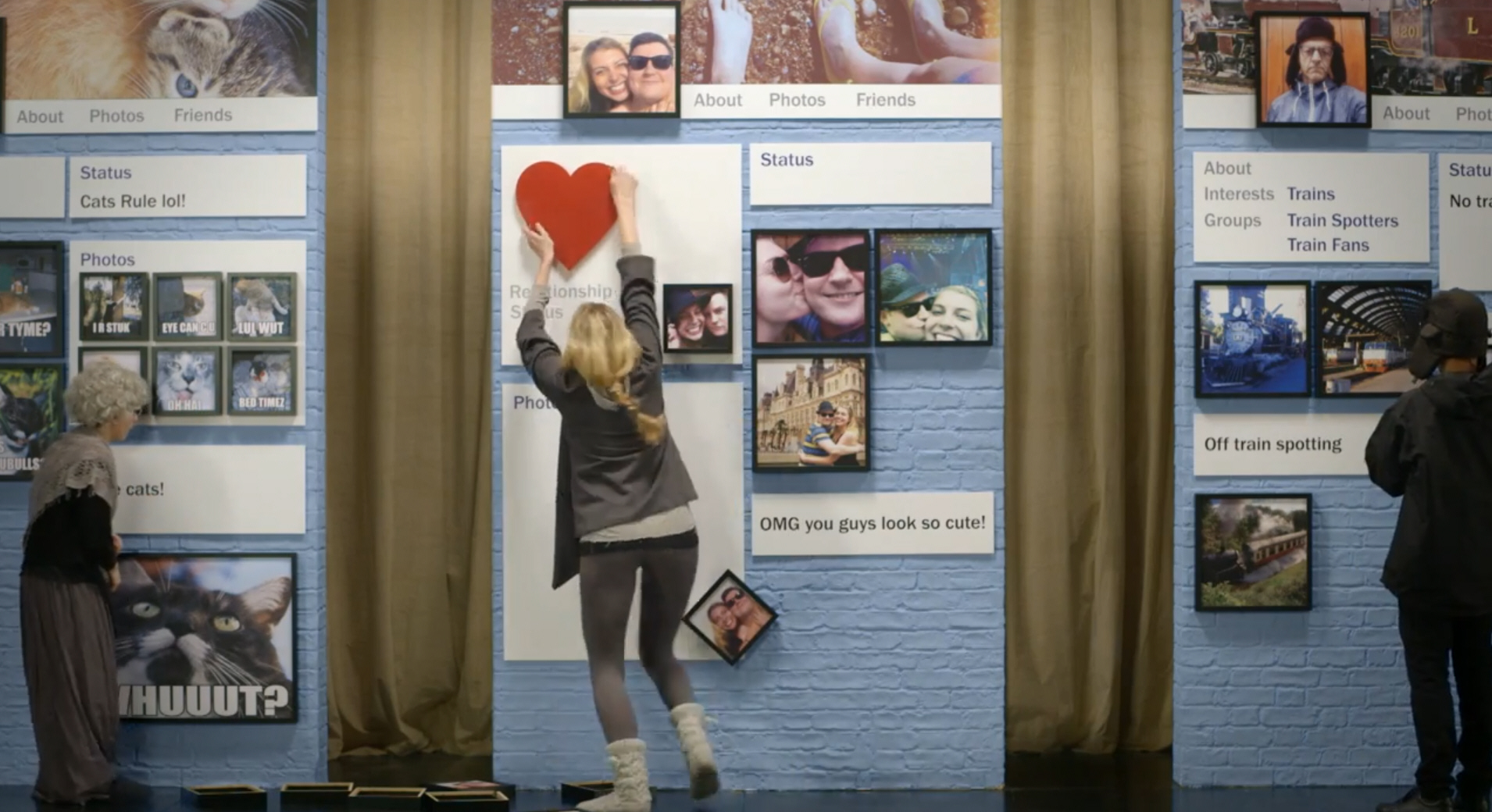
Most people can think back to a time when we didn’t have mobile phones, so imaging a world without them isn’t too much of a stretch.
But Qualcomm has created an amusing video seemingly set in an alternate reality where all the products and services we use today -- ranging from email, Facebook and Twitter, to video and games -- still exist, but smartphones and tablets don’t.
In Qualcomm’s world, watching videos on the go is only possible if you lug your TV set with you, tweets arrive as messages tied to the feet of blue birds, and updating your profile involves rearranging content on an actual brick wall.
There are a lot of comic moments in the video, although the arrival of someone playing a game of Angry Birds is a definite highlight.
While the idea itself is far from original, the execution is very good, proving it is possible for tech companies to do comedy -- Microsoft take note.
-

Opera lets you create a Smart TV app from your web videos
Publié: juillet 11, 2013, 11:48am CEST par Wayne Williams
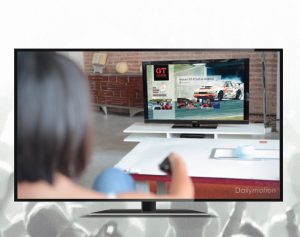 Norwegian browser developer Opera has teamed up with video sharing site Dailymotion to create a new service that can transform any Dailymotion video channel into a Smart TV application in less than a minute.
Norwegian browser developer Opera has teamed up with video sharing site Dailymotion to create a new service that can transform any Dailymotion video channel into a Smart TV application in less than a minute.Opera TV Snap lets you convert an existing online video channel into a ready-to-run HTML5 app for inclusion in the Opera TV Store, a Smart TV app storefront supported by major television and set-top-box manufacturers.
To create an app all you have to do is visit opera.com/tvsnap, fill in a description of the channel, and click submit. If it passes moderation, it will be added to the TV Store. Content can even be monetized.
"Video has proven to be the most popular app category for Smart TV audiences, and it’s no wonder, as larger TV screens can bring viewers up close and personal with their favorite online content," says Aneesh Rajaram, Senior Vice-President for TV & Devices, Opera Software. "Opera TV Snap will help brands and content owners effortlessly reach new audiences, while bringing a greater choice of popular video to viewers. I can’t wait to watch the latest highlights from my favorite sports teams and music artists directly on my Smart TV".
The Opera TV Store is already available on Smart TVs and Blu-ray Disc players from Sony and TCL, and has also been selected by Humax, Hisense and MediaTek.
-

Google introduces a 'new mapping experience' for smartphones and tablets
Publié: juillet 10, 2013, 11:36am CEST par Wayne Williams
Google has started rolling out a new version of Google Maps for Android devices, with plans to update the iOS edition "soon".
According to Daniel Graf, Director, Google Maps, the updated app builds on the version Google released for the iPhone last December, but improves on it by adding additional search and navigation features, as well as a dedicated design for iPads and Android tablets.
New features include:
- Explore -- Tap the search box to see cards showing local places to eat, drink, sleep and shop.
- Enhanced navigation -- As well as current traffic conditions, Google will now alert you to incidents on the road ahead, and if a better route opens up while you're out and about, the app will direct you to take that instead. If anyone at Google ever decides to switch to a life of crime, this feature will come in handy for redirecting armored cars down deserted alleyways…
- Reviews, Zagat and Offers -- The app features a new 5 star rating system for restaurants, bars and cafes, and the Zagat badge of excellence and curated lists is being integrated into search results. Offers from major brands will also appear directly on the map.
- OK Maps -- replacing the current offline maps feature for Android, this lets you access maps offline by simply entering "OK Maps" into the search box when viewing an area to save for later.
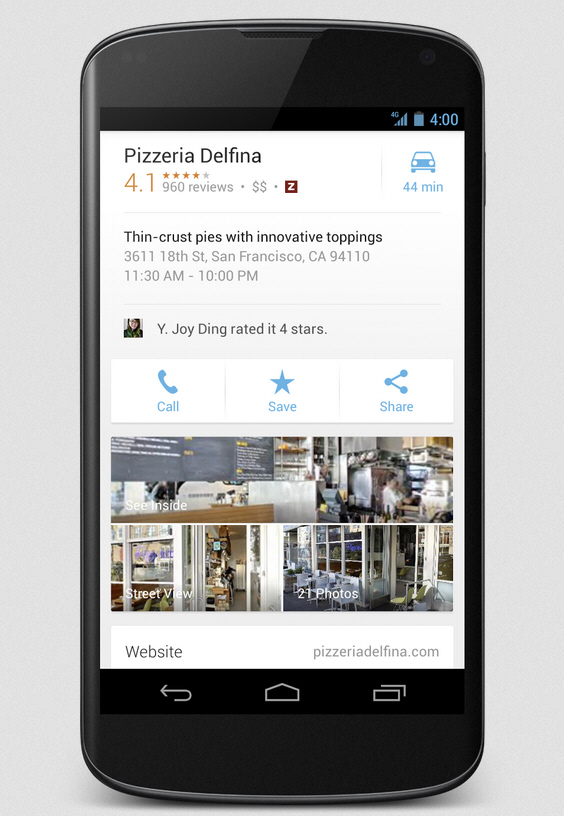 Google has removed Latitude and check-in from the new app, and will be retiring them from older versions on August 9. If you're an avid user of those features, you can still use them, but through the Google+ app.
Google has removed Latitude and check-in from the new app, and will be retiring them from older versions on August 9. If you're an avid user of those features, you can still use them, but through the Google+ app.My Maps functionality is not available in this release either but will be added at a later date.
Daniel Graf sums up the new app saying, "Helping you find great places is what we love to do. And as more of us use mobile phones and tablets in our daily lives, information that's useful to you isn't just about what you need, but also where you might find it. Today's update is an exciting step forward for Google's maps -- one that we hope will make it faster and easier for you to explore and discover places you want to go".
The app update will be gradually rolling out to Android 4.0.3+ users over the next few weeks. For additional information, and to see if it's available for you, take a look at the Google Play store.
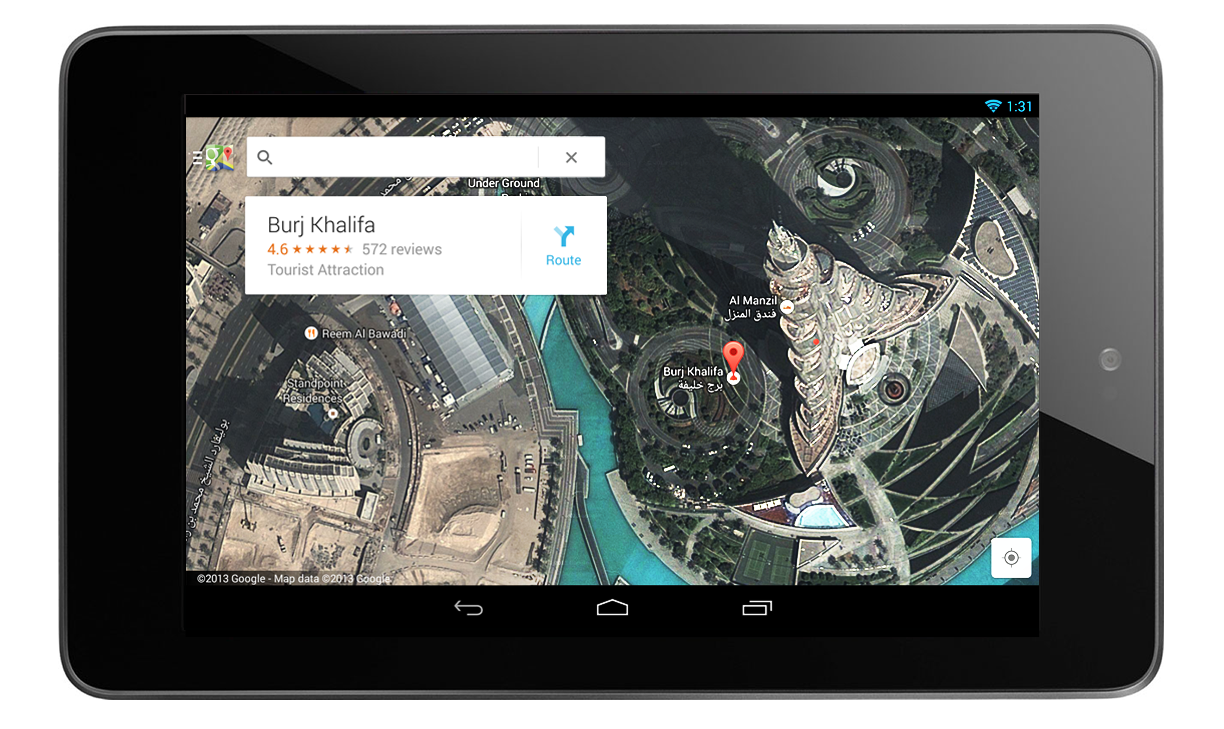
-

Microsoft rolls out updates for Windows 8.1 Preview
Publié: juillet 9, 2013, 10:08pm CEST par Wayne Williams
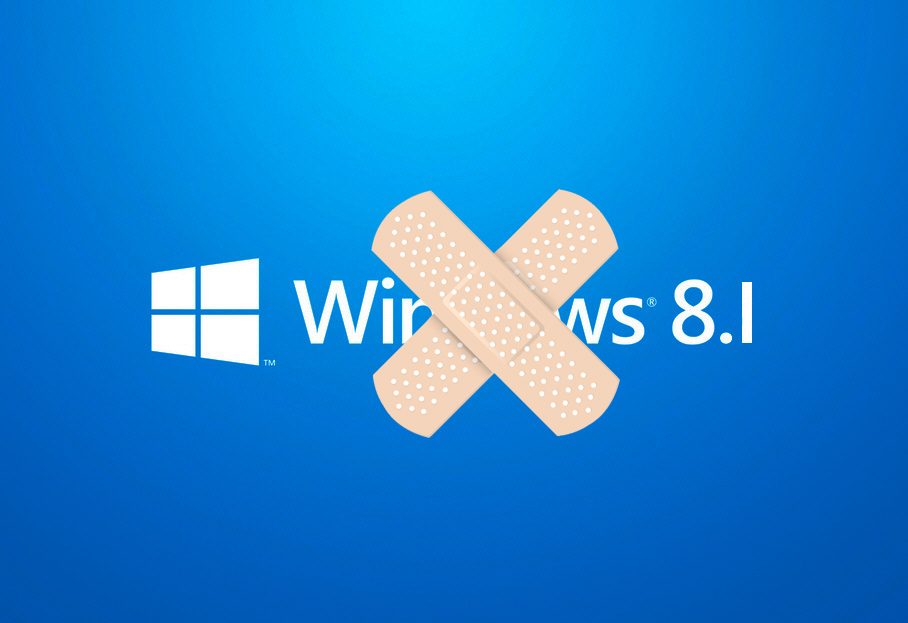
It's Patch Tuesday, which means a new raft of updates for Microsoft's operating systems and software, including seven security patches for Windows 8. For the first time, Microsoft's patch collection also includes updates for Windows 8.1 Preview, the OS refresh the software giant debuted a couple of weeks ago.
If you're running Windows 8.1, you can grab the new updates, dated 9 July, via Windows Update.
I am running Windows 8.1 Preview x64 and so was offered the following updates:
- KB2863147: No notification about the expiration date of Windows 8.1 Preview.
- KB2865946: Smart card PIN disclosure after an automatic restart for Windows Update in Windows 8.1 Preview.
- KB2866512: Internet Explorer 11 Preview freezes or crashes while loading a webpage that contains widgets.
- KB2866518: Can't view OWA inbox in Internet Explorer 11 Preview.
- KB2866537: Windows Store app instability after an app update in Windows 8.1 Preview.
There was also a definition update for Windows Defender and a security update for Internet Explorer Flash Player.
As part of Patch Tuesday, Microsoft additionally released a firmware update for Surface RT, which addresses "system performance and reliability".
Adhesive Bandage Photo Credit: Kae Deezign/Shutterstock
-

Will Google Glass turn us all into government spies?
Publié: juillet 9, 2013, 1:48pm CEST par Wayne Williams
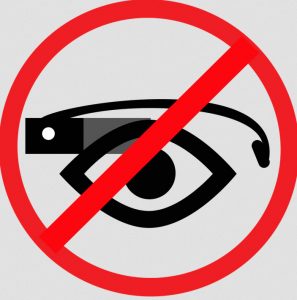 On 4 July, the founder of PRserve, Chris Barrett videoed an arrest that followed a fist fight on the Jersey Shore boardwalk.
On 4 July, the founder of PRserve, Chris Barrett videoed an arrest that followed a fist fight on the Jersey Shore boardwalk.We live in a world where such actions are routinely recorded on smartphones and uploaded to YouTube, but what makes Chris’s video unusual is he used Google Glass to film it.
As Barrett pointed out in an interview he gave to VentureBeat, "I think if I had a bigger camera there, the kid would probably have punched me. But I was able to capture the action with Glass and I didn’t have to hold up a cell phone and press record".
In other words, because most people haven’t even yet heard of Google’s wearable computer, let alone seen one in the real world, Barrett was able to record the action without anyone knowing they were being filmed.
I live in the UK, which is the most watched country in the world. There are cameras everywhere you go -- whether you’re out on the street, in a shop, or riding public transport, someone, somewhere is watching you.
At the moment, the vast majority of those cameras are fixed, but if Google Glass takes off the way the web giant hopes it will, suddenly there’s the potential for a whole mobile army of users recording your activity, without you knowing about it.
The vast majority of people already carry a video camera everywhere, in the form of a smartphone. But Google Glass is different. It’s primed and ready to record at a moment’s notice. No fumbling about trying to get your phone out and firing up the camera.
And pretty much anyone can wear and use Glass -- police officers, lifecasters, perverts.
Privacy campaigners like the London-based Stop the Cyborgs want limits placed on when and where the device can be used, and privacy issues have been raised by US Congress. Google for its part says use of Google Glass will be governed by the terms of the Google Privacy Policy and no changes to that are planned for the device.
At Google I/O this year we saw how easily video can be live streamed to a Google+ Hangout, and this lead to a friend of mine asking an interesting question. If government agencies do indeed have "direct" access to your data from Microsoft, Apple, Google, Yahoo and Facebook, what’s stopping them from having direct access to all the footage streamed by Glass wearers worldwide?
In other words, what’s stopping the government from transforming anyone wearing Glass (or a similar product from Apple or Microsoft) into a mobile CCTV camera?
Stop the Cyborgs describes the possibilities thusly: "Imagine 10 percent of the population doing this all the time, walking in and out of buildings and homes. Imagine all this data being time stamped and geotagged, flowing to a large database in the cloud. A omniscient eye; a real time streetview extending into homes and businesses; society as a glass prism".
Does that possibility worry you, or do you think it’s all conspiracy theory nonsense? Have you long since given up worrying about privacy? Leave your comments below.
Image credit: Stop the Cyborgs
-

Watch Steve Ballmer’s day one keynote at the Worldwide Partner Conference 2013
Publié: juillet 9, 2013, 12:26pm CEST par Wayne Williams
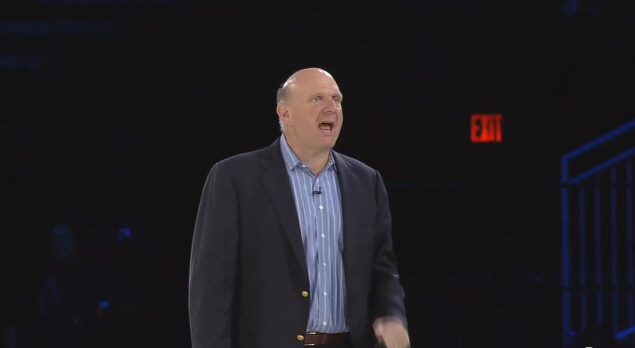
Yesterday Microsoft CEO Steve Ballmer provided the opening remarks at the Worldwide Partner Conference (WPC 2013) day one keynote, taking the opportunity to hype Windows 8.1 and sell the benefits of Windows Phone.
He started the half hour keynote by thanking the 15,000 attendees in the room for their support and for taking care of Microsoft’s customers, before getting on to the subject of the company’s divisive operating system.
"Windows 8 was nothing short of the most remarkable re-platforming of Windows, basically, since 1995", Ballmer said. "And we’ve gotten a lot of feedback on Windows 8. I think we did a heck of a good job on Windows 8 and we’re going to spend a lot of today also talking about Windows 8.1. Because we listened and we learned, and as good as Windows 8 is, I just encourage you to really take a look at the Windows 8.1 demo. It really speaks to the feedback we’ve gotten, it builds on the exciting new user interface, the abrasive new platform, the new programming model, but we’ve also digested the feedback that we’ve gotten, from people on how it works in the enterprise, what we need for serious desktop users, and I think you’ll be incredibly impressed by the work on Windows 8.1".
It’s always interesting to watch Steve Ballmer bullishly promoting Microsoft and you can catch up on his keynote in its entirety below.
-

LG teases the forthcoming Optimus G2 smartphone
Publié: juillet 8, 2013, 12:49pm CEST par Wayne Williams
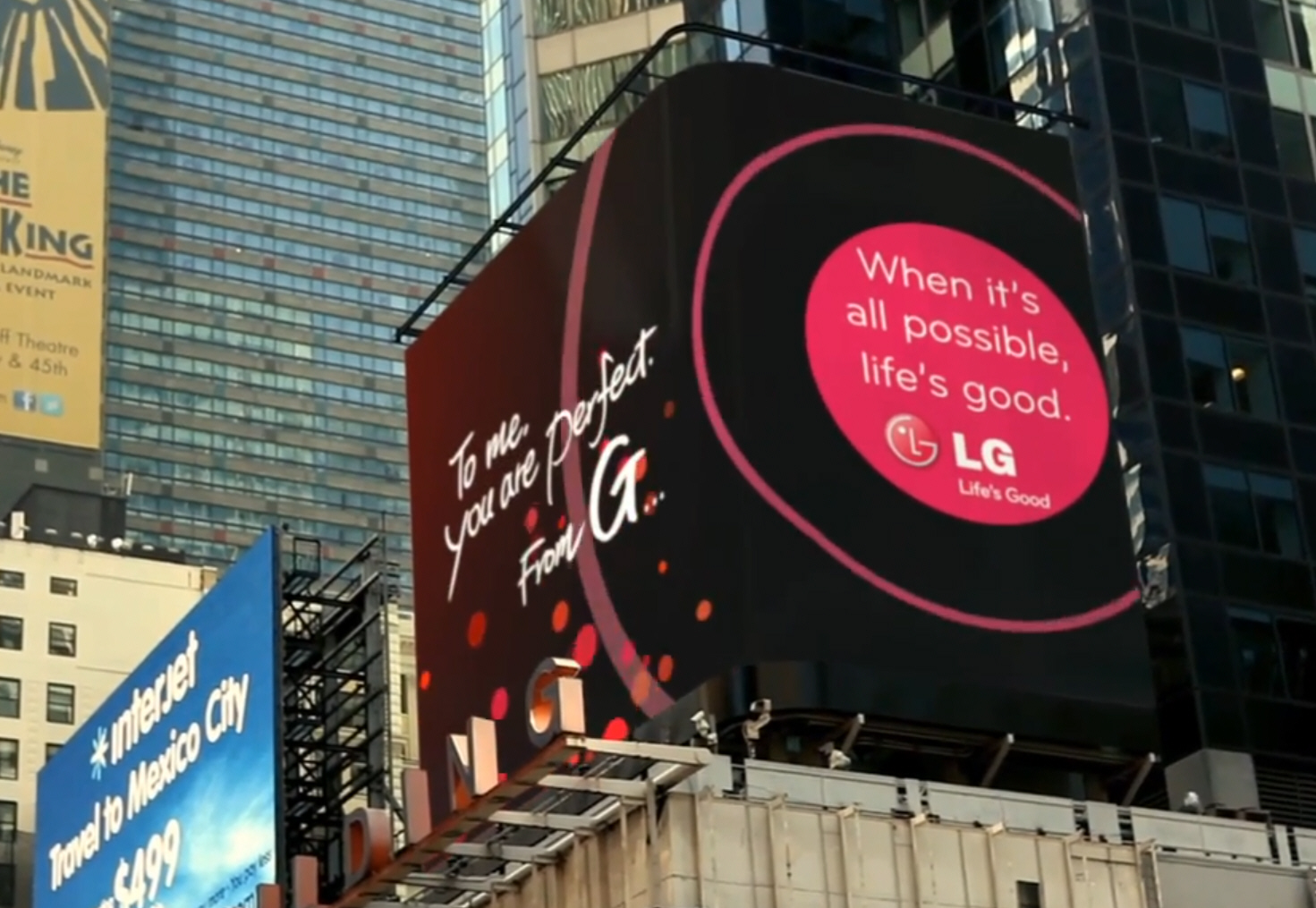
LG is set to launch a new product in New York on 7 August and has posted a Samsung style teaser video suggesting the device will be the follow up to the Optimus G.
The video clip shows various locations in New York as viewed from a first person perspective. At each landmark, including Central Park and the Brooklyn Bridge, the person holding the camera sees a sign stating "To me, you are perfect. From G", which also happens to be the name of the video.
The clip ends with a message stating "Great 2 Have You" -- with the G and 2 emphasized in a much larger font size. A fairly obvious signpost as to what device will be unveiled next month.
LG has also put up a teaser billboard advert in Times Square, again featuring the "To me, you are perfect. From G" message.
 There have been rumors about the Optimus G2 for a while, with suggestions the flagship Android smartphone will be powered by a Qualcomm Snapdragon 800 processor.
There have been rumors about the Optimus G2 for a while, with suggestions the flagship Android smartphone will be powered by a Qualcomm Snapdragon 800 processor.It seems we’ll find out for certain on 7 August.
Hopefully, LG will release the device a lot earlier in Europe than it did the original Optimus G which took nearly six months to arrive.
-

Touchy subject -- How do you use Windows 8? [Poll]
Publié: juillet 3, 2013, 10:49am CEST par Wayne Williams
 Although Microsoft created Windows 8 with touch devices in mind, there weren’t actually all that many Windows friendly touch screen PCs and tablets available at launch.
Although Microsoft created Windows 8 with touch devices in mind, there weren’t actually all that many Windows friendly touch screen PCs and tablets available at launch.Since then of course, every manufacturer -- including Microsoft -- has rolled out devices designed to take advantage of the touch features built into the OS. We’ve seen regular PCs with touch screens, tablets, hybrids, and all manner of weird and wonderful variations.
The future, whether you like it or not, is clearly touch, which makes me wonder what the current state of play is. If you’re a Windows 8 user (or Windows 8.1 for that matter), how do you use the operating system? Do you have a regular PC, a touch screen PC, or a tablet?
And if you don't currently have a touch device, are you thinking of getting one in the near future?
Just answer the simple poll, and tell me your thoughts on touch in the comments below.
Photo Credit: lukacs tamas/Shutterstock
Note: There is a poll embedded within this post, please visit the site to participate in this post's poll. -

Want to know what’s new in Windows 8.1? Microsoft releases a 52 page guide
Publié: juin 29, 2013, 9:24am CEST par Wayne Williams
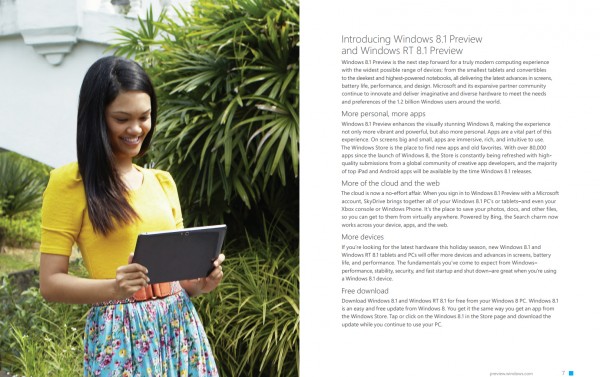 On 26 June, Microsoft rolled out the highly anticipated Windows 8.1 Preview, making it firstly available through the Windows Store, and then as ISOs a day later. The Windows refresh has a lot of new features, besides the new Start button, and to help sell the product Microsoft has created a PDF guide.
On 26 June, Microsoft rolled out the highly anticipated Windows 8.1 Preview, making it firstly available through the Windows Store, and then as ISOs a day later. The Windows refresh has a lot of new features, besides the new Start button, and to help sell the product Microsoft has created a PDF guide.Called "Windows 8.1 Preview Product Guide", the PDF starts with an overview before going through the features on offer.
Although the pages are numbered from one to 52, the guide is presented in double page spreads, so there’s actually only 27 pages to read through. In those pages Microsoft touches on the new features, rather than expressly showing what they are and do -- this is essentially a sales brochure not a how-to guide -- but if you’ve missed some of the changes, the booklet will point them out.
The PDF showcases the enhanced searching experience, improved personalization, better SkyDrive integration, and Internet Explorer 11. It also pushes the work angle, with sections devoted to collaborating with Office 365 and SkyDrive. There’s a section headed "Windows devices and services for business" which looks at managing personal devices, and the enterprise grade security offered by the OS.
Coming off the back of Build there’s even a section on "Building Windows Store apps".
It’s an interesting read, although if you already know a bit about what’s new in Windows 8.1 you may not learn an awful lot from it. You can download the guide here.
-

Microsoft listens, and gives everyone the Start button they didn’t ask for
Publié: juin 28, 2013, 4:20pm CEST par Wayne Williams
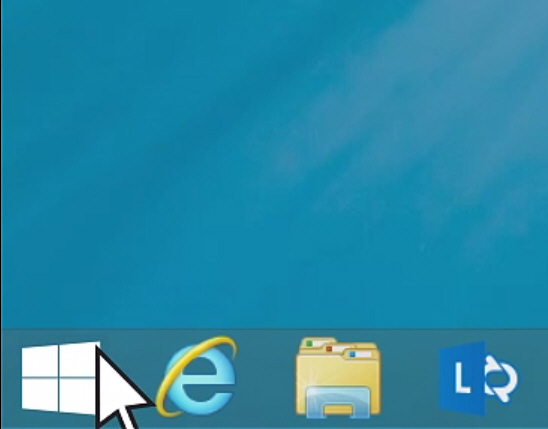 I had an old uncle who watched a lot of TV. If you tried to speak to him while he was concentrating on the screen he would politely nod and say "I’m listening" even though he patently wasn’t. Microsoft is the tech world equivalent of my uncle.
I had an old uncle who watched a lot of TV. If you tried to speak to him while he was concentrating on the screen he would politely nod and say "I’m listening" even though he patently wasn’t. Microsoft is the tech world equivalent of my uncle.I knew when Windows division CFO Tami Reller discussed the Start button with The Verge a month ago and said: "We've really tried to understand what people are really asking for when they're asking for that", the end result would be something nobody had asked for, nor wanted. And of course, that’s exactly what the Windows 8.1 Start button is.
Sure, you now get a button sitting on the taskbar when in the desktop. Just like in the good old days. But when clicked it takes you away from the desktop and chucks you back to the Start screen. Behavior no different from tapping the Windows key in Windows 8. Or clicking the area of blank space near to where the button now resides.
You can configure what that button does so it will display the All apps screen instead of the Start screen, which is a compromise of sorts, but Windows 8.1 still throws you out of the desktop when all you want to do is run a program.
It’s the equivalent of being forced to actually go outside through a door to see what the weather is like, instead of just being able to peer through a window -- like you used to be able to do before it got bricked up when all those "improvements" were going on. Microsoft lets you use your desktop wallpaper as a background on the Start screen, to fool you into thinking you’re still in the desktop, but you aren’t.
You can shut down your computer by right-clicking the Start button and selecting that option from the mini (non-customizable) menu that pops up, so there's that at least.
Don’t get me wrong, I’m grateful for the behavior changes in Windows 8.1 and the fact that I can go to an apps screen from the desktop by tapping a Start button. It’s a definite improvement. And I appreciate that Microsoft didn’t want to do a complete U turn and revert back to an old style Start button and menu, but anyone who upgrades to Windows 8.1 from Windows 7 or XP purely because they've heard the Start button is back, will feel more than a little duped when they actually try it for the first time.
-

Battle Tested: Microsoft’s cloud services by the numbers
Publié: juin 28, 2013, 1:38pm CEST par Wayne Williams
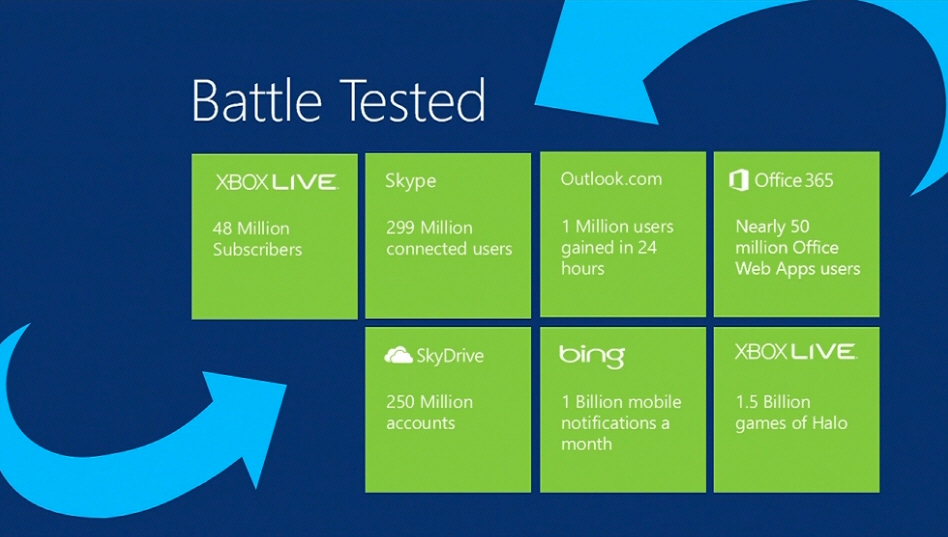
During day two's keynote at the Microsoft Build 2013 developer conference, Server and Tools Business President Satya Nadella talked about the SaaS (Software as a Service) applications Microsoft runs.
In particular he focused on the scale and diversity of the company’s daily work in the cloud, while a "Battle Tested" slide displayed the all-important numbers for Xbox Live, Skype, Outlook.com, Office 365, SkyDrive and Bing.
Xbox Live (which appeared twice on the slide) now has 48 million subscribers, and there have been 1.5 billion games of Halo played to date. Skype has 299 million connected users, Outlook.com gained 1 million users in 24 hours, Office 365 has nearly 50 million Office Web Apps users, SkyDrive has 250 million accounts, and Bing delivers 1 billion mobile notifications a month.
Nadella discussed each service in detail, starting with Xbox Live:
Take Xbox. When they started Xbox Live in 2002 they had around 500 servers, now they use something like 300,000 servers -- which are all part of our public cloud -- to be able to really drive their experiences. Halo itself has had over a billion games played, and something like 270 million hours of gameplay, and Halo uses the cloud in very interesting ways -- for pre-production rendering support and assist, gameplay, post production analytics... the amount of real time analytics that’s driving the continuous programming of Halo is pretty stunning.
He then ran through the numbers of the other services.
Take SkyDrive, we have over 250 million accounts. You combine SkyDrive with the usage of Office Web Apps, where we have more than 50 million users of Office Web Apps, you can see a very different set of things that are happening with storage, collaboration, productivity.
Skype is re-architecting their core architecture to take advantage of the cloud for their 290+ million users. Bing Apps, you saw many of them yesterday as part of Windows 8.1, are using the Azure backend to do a lot of things like notifications which is one of the core scenarios for any mobile apps, and this has to send something like a billion notifications a month.
I’d like to have seen the latest total numbers for Outlook.com, but all very interesting nonetheless.
-

Take a stroll through the Google graveyard
Publié: juin 27, 2013, 8:44pm CEST par Wayne Williams
In a couple of days, Google will pull the plug on Reader, its still much beloved RSS feed reading service, leaving dedicated users seeking refuge in the arms of Feedly, AOL Reader, Digg Reader, and numerous other alternatives.
There’s sadly no chance of a last minute reprieve. When Google decides to kill a service, it kills it. The company’s history is littered with such casualties -- great and not-so great ideas that for one reason or another just didn’t connect with a large enough audience or achieve the level that Google had hoped for.
To commemorate some of the many products and services that the web giant has killed off over the years WordStream has put together what has to be one of my all-time favorite infographics.
The Gooooooogle Graveyard -- A Resting Place for Great Ideas, covers the likes of Reader, iGoogle, Google Talk, Google Health, Knol, Buzz, Notebook, Labs, Dodgeball, Lively, and Google Answers. In total WordStream covers 20 services, some you’ll remember fondly and will no doubt have used, while others might have you scratching your head and wondering why you don’t recall them.
The graphic provides a little piece of information on each service, a screen-shot, and of course a gravestone marking the month and year (or just the year) when that little piece of Google history shuffled off this digital coil.
How many of these featured products have you used? Any you still mourn for?

-

Install Windows 8.1 Preview on Oracle VirtualBox
Publié: juin 27, 2013, 6:16pm CEST par Wayne Williams
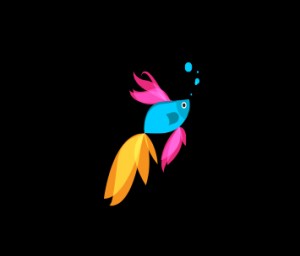 Shortly after Windows 8.1 Preview was announced at this year's Build conference, Microsoft made it available to install through the Windows Store. The ISO files took a while to appear (MSDN subscribers got to download them first, followed by anyone with access to BitTorrent) but they are finally available to download officially from here.
Shortly after Windows 8.1 Preview was announced at this year's Build conference, Microsoft made it available to install through the Windows Store. The ISO files took a while to appear (MSDN subscribers got to download them first, followed by anyone with access to BitTorrent) but they are finally available to download officially from here.Because Windows 8.1 is a preview version, and far from the finished article, you may not want to upgrade your existing operating system just yet. Fortunately, you can try the Windows 8 refresh without risk by installing it in a virtualized environment using the free Oracle VM VirtualBox.
Launch VirtualBox and click New in the Manager window. In the Create Virtual Machine dialog box enter "Windows 8.1" as the name of the operating system. VirtualBox will fill in the rest of the details. Hit Next.
Set the Memory Size. The recommended figure should be fine. On the following screen choose to "Create a virtual hard drive now" and click Create.
Accept VDI (VirtualBox Disk Image) as the hard drive file type. You’ll be asked if you want the new virtual hard drive to be dynamic (meaning it will resize as required) or a fixed size. Although it will take a while longer to create a fixed size drive, the operating system will run faster afterwards, so I always recommend choosing the latter option.

Enter in a name for the new virtual drive ("Windows 8.1") and choose a size for it. The default size should be fine. Click Create and VirtualBox will begin building the drive. It will probably take around 10 minutes or so.
When done, click the Start button in the Manager. In the "Select start-up disk" window, click the folder icon and navigate to the Windows 8.1 ISO.
Click Start and Windows 8.1 will begin to load, showing the fish screen. Click the "Install now" button. Enter the product key (NTTX3-RV7VB-T7X7F-WQYYY-9Y92F) when prompted and accept the license terms. Choose the "Custom: Install windows only (advanced)" option. Click Next, and the installation process will begin, rebooting as necessary.
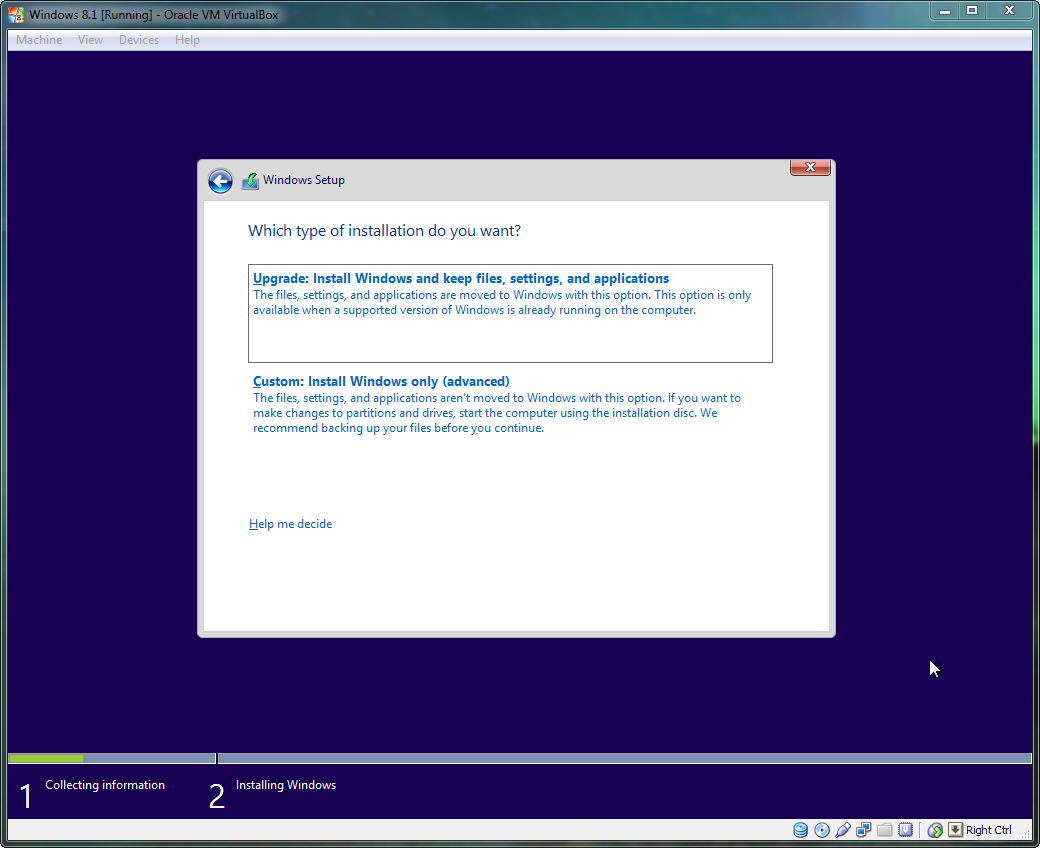
When that’s done, personalize the OS by picking a color and entering a PC name, and then choosing to use the express settings or customizing things further.
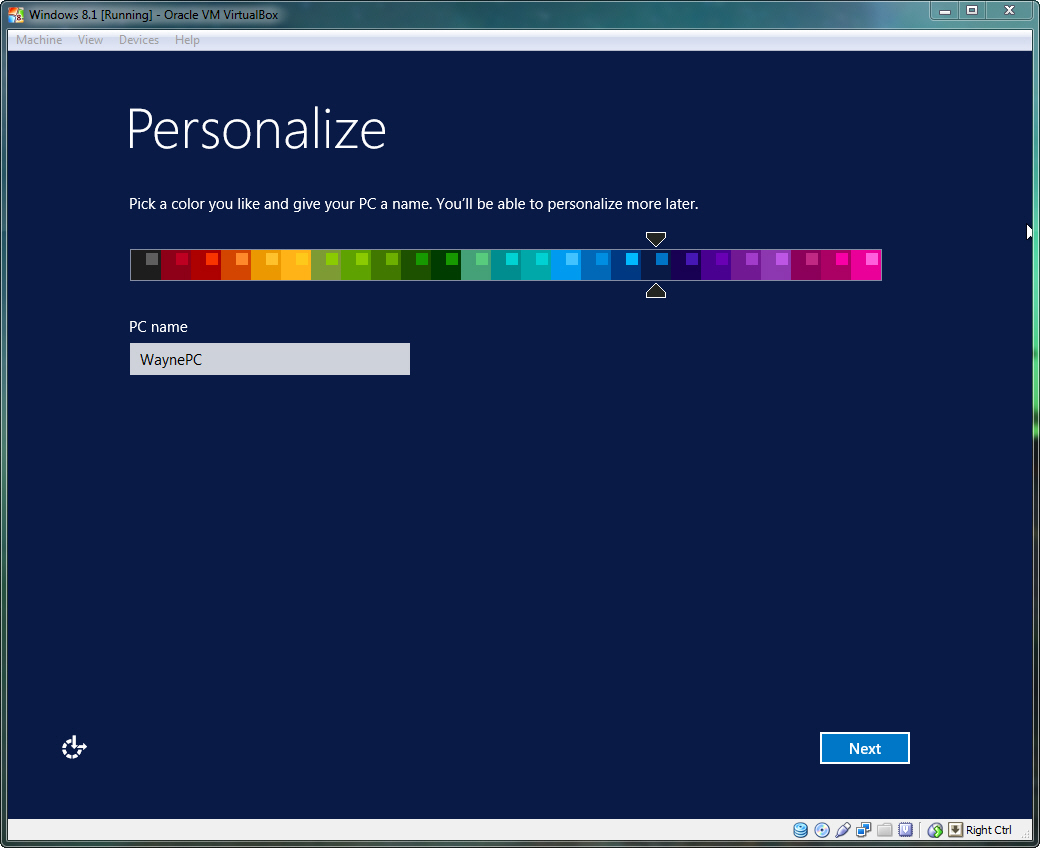
Set up a Microsoft Account if you don’t already have one, and sign in with it. You'll then be able to choose if you want to use SkyDrive to save your files to the cloud. Camera roll and PC settings are automatically backed up there.
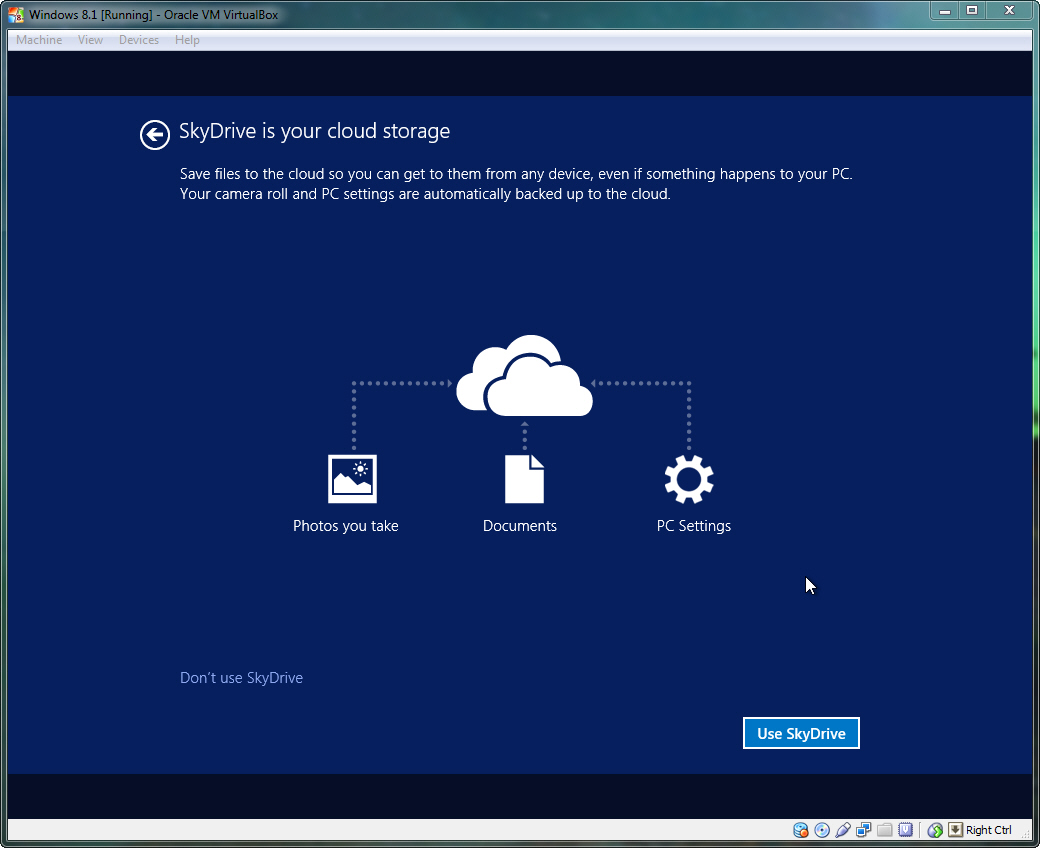
Windows will set everything up, check for updates, and then start. Click View in VirtualBox to change the window size to Fullscreen or Scale. The easiest way to shut down Windows 8.1 is to click the X in VirtualBox and select "Power off the machine".
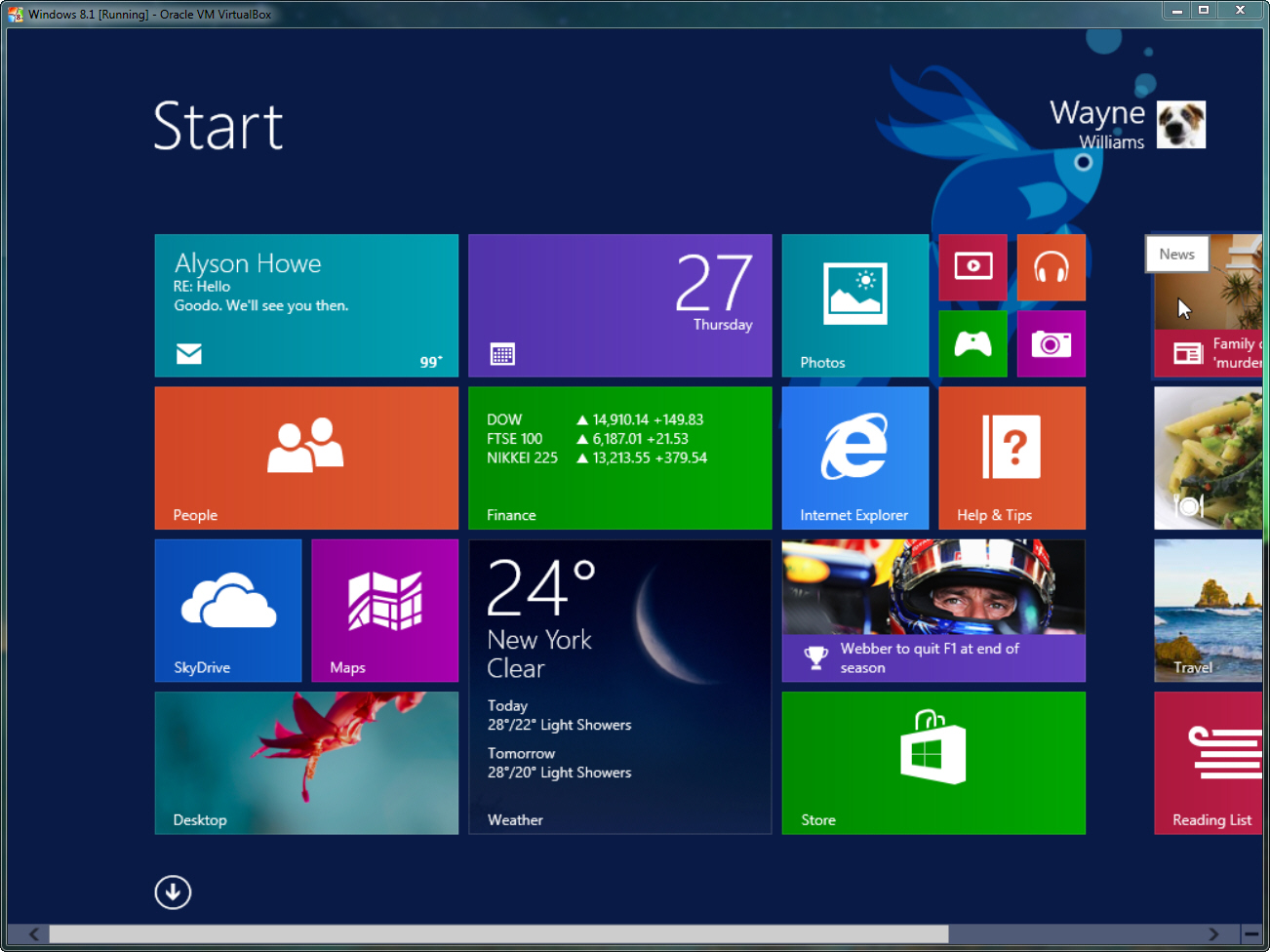
-

Yahoo News gets a refresh
Publié: juin 27, 2013, 5:45pm CEST par Wayne Williams
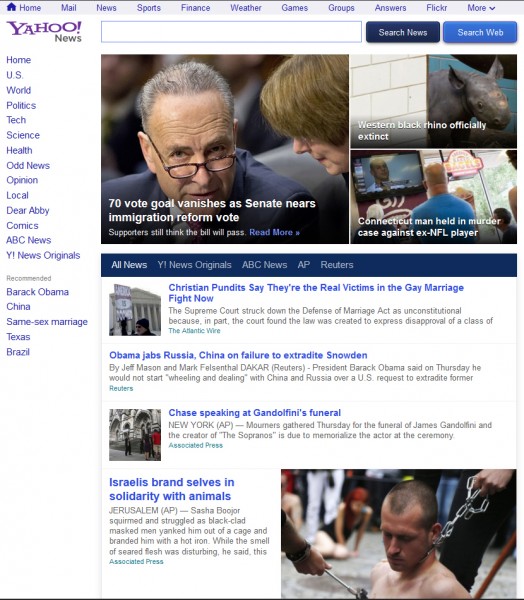 Yahoo is rolling out what it describes as a "more personal, intuitive and modern design" for its News site.
Yahoo is rolling out what it describes as a "more personal, intuitive and modern design" for its News site.According to Mike Kerns, Vice President, Product, "The first thing that you’ll notice about the new Yahoo News is that it was designed around your interests and preferences. We made the news stream customizable so you can tell us what content you’d like to see more of. Yahoo! News will get smarter over time -- the more you use it when signed in with your Yahoo! ID, the more it learns about your preferences, creating a personal news hub just for you. And the new News is super-fast, articles now load faster than before".
The new design is certainly a big improvement, with the news presented in a single central column, and categories such as US, World, Politics, Tech, and ABC News easily accessible on the left hand side.
In addition, Kerns says "You’ll also notice an improved design when you visit Yahoo! News on your iOS devices, and soon on your Android devices. We wanted to be sure you’re getting not only a familiar experience but the best experience whether you’re sitting at your desk or on-the-go".
The redesigned Yahoo News is rolling out now. If you live in the US that is. The rest of the world will have to wait a while longer to see it.
-

Better apps coming to Windows 8.1?
Publié: juin 26, 2013, 10:26pm CEST par Wayne Williams
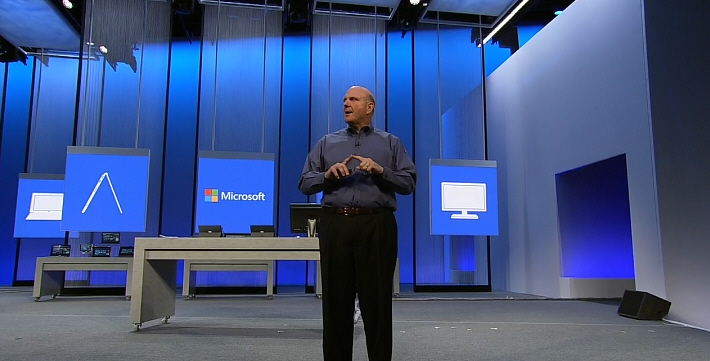
Microsoft wants -- and needs -- users to embrace apps. The problem is many PC users don’t really care about them, and even tablet users don’t seem too enthralled. It doesn’t help that a lot of the apps on offer through the Windows Store are third party knock-offs rather than official releases.
At Build today, Microsoft CEO Steve Ballmer announced that the Windows Store has hit the 100,000 apps milestone (a figure which, incidentally, Keith Lorizio, Microsoft VP, U.S. Sales & Marketing promised to hit within 90 days of Windows 8’s launch) and that, finally, an official Facebook app is on its way to the Modern UI.
Getting Facebook to embrace the tiled OS is a start, and an important app that Microsoft should really have had onboard when Windows 8 first launched.
That wasn’t the only app, Ballmer mentioned. Official apps for Flipboard and NFL Fantasy Football are coming to the redesigned Windows Store too, and there are two new Bing apps in the Windows 8.1 Preview -- Food & Drink, and Health & Fitness. We got to see an early PowerPoint app too, suggesting development of Office for the Modern UI is progressing steadily.
Microsoft is also touting new "opportunities for developers to design, build and market their apps by leveraging the redesigned Windows Store, additional monetization opportunities and flexible design options".
Which sounds great, but won’t get the likes of Google, the BBC, or other major content creators knocking on the door.
But hopefully, if Microsoft can persuade a few more big names to follow Facebook and port existing apps to the OS -- or better yet build new ones -- and Windows 8.1 does its job and convinces more people to upgrade, the Windows app ecosystem might start to genuinely flourish, and finally grow beyond the rather embarrassing joke it is now.
Or am I just dreaming?
-

Developers can get the new Kinect for Windows sensor direct from Microsoft for $399
Publié: juin 26, 2013, 7:51pm CEST par Wayne Williams
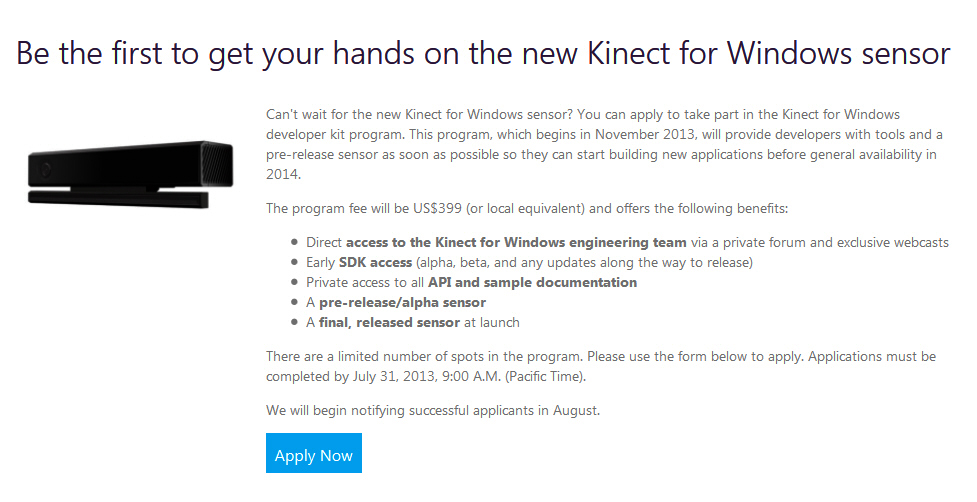
The Xbox One comes with a new and seriously improved Kinect sensor. Windows users will be able to get their hands on the same sensor at some point in the future, but if you’re a developer you can register your interest now and get one in November, several months before it goes on sale to the general public.
The developer kit costs $399 (or the local equivalent) and comes with the sensor and all the tools you need to build your own applications. There’s limited availability so if you want to be among the first to have one you’ll need to apply now.
The Kinect for Windows developer kit program offers the following:
- Direct access to the Kinect for Windows engineering team via a private forum and exclusive webcasts.
- Early SDK access (alpha, beta, and any updates along the way to release).
- Private access to all API and sample documentation.
- A pre-release/alpha sensor.
- A final, released sensor at launch.
If you’re interested in applying for one of the developer spots and a second generation Kinect for Windows sensor you can express your interest here. Successful applicants will be notified in August.
-

Watch Microsoft unveil Windows 8.1 Preview at Build
Publié: juin 26, 2013, 5:25pm CEST par Wayne Williams
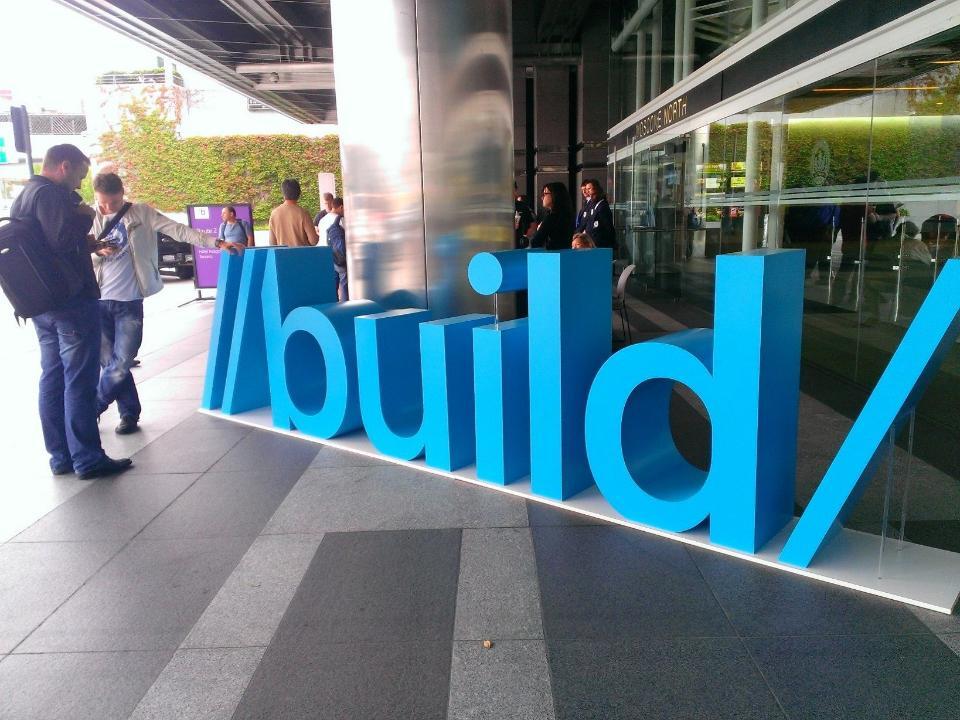
At the Build 2013 developer conference, Microsoft will be sharing updates and talking about what's next for Windows, Windows Server, Windows Azure, Visual Studio, and more. It will also be showcasing the highly anticipated Windows 8.1 update, as well as making the OS refresh available to download and install.
Live keynotes are scheduled for Wednesday, June 26 from 9-11 am Pacific Time, and Thursday, June 27 from 9-11 am Pacific Time and the good news, if you're interested in all things Windows, is you don't need to travel all the way to The Moscone Center in San Francisco, or shell out $2,095 for a full priced ticket to view them.
BetaNews will embed the live video from Microsoft’s Channel 9 here as soon as it becomes available.
To watch the two-hour long Day 1 Keynote just make sure you're here at 9am Pacific Time/12pm Eastern Time. If you're in the UK, be here for 5pm.
Update: Missed it? Don 't worry you can still watch the full keynote below.
-

How tech companies collect data on you, and what they do with it
Publié: juin 26, 2013, 1:23pm CEST par Wayne Williams
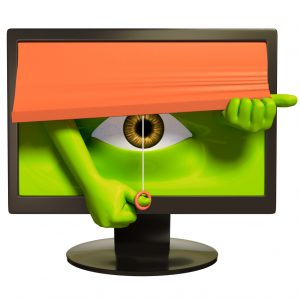 Big Brother is watching you. Or rather technology giants like Google, Apple, Amazon, Facebook and Yahoo are. The firms track their users relentlessly, and use that information to provide a tailored online experience (and maybe share it with government agencies).
Big Brother is watching you. Or rather technology giants like Google, Apple, Amazon, Facebook and Yahoo are. The firms track their users relentlessly, and use that information to provide a tailored online experience (and maybe share it with government agencies).Baynote, which provides personalized customer experience solutions for multi-channel retailers, has put together an interesting visual insight into what data the tech titans gather about you, how it’s collected, and what purposes it’s put to.
The type of data harvested by the firms we all use on a daily basis includes ad clicks, browser and device specific information, email addresses, face scans, IP addresses, OS details, phone numbers and search queries.
The data is sourced through cookies, profiles, third parties, search queries, and Double Click and AdSense, and used to provide location services, deliver notifications, personalize content, share info with third parties, and serve up targeted advertising.
The infographic below shows which of the data gathering, tracking and usage methods the top tech companies use, and also provides details on each firm’s market cap, estimated number of users, and privacy policy word count.
Fascinating stuff, although it's disappointing Microsoft wasn't included in the list.
Photo Credit: Slavoljub Pantelic/Shutterstock
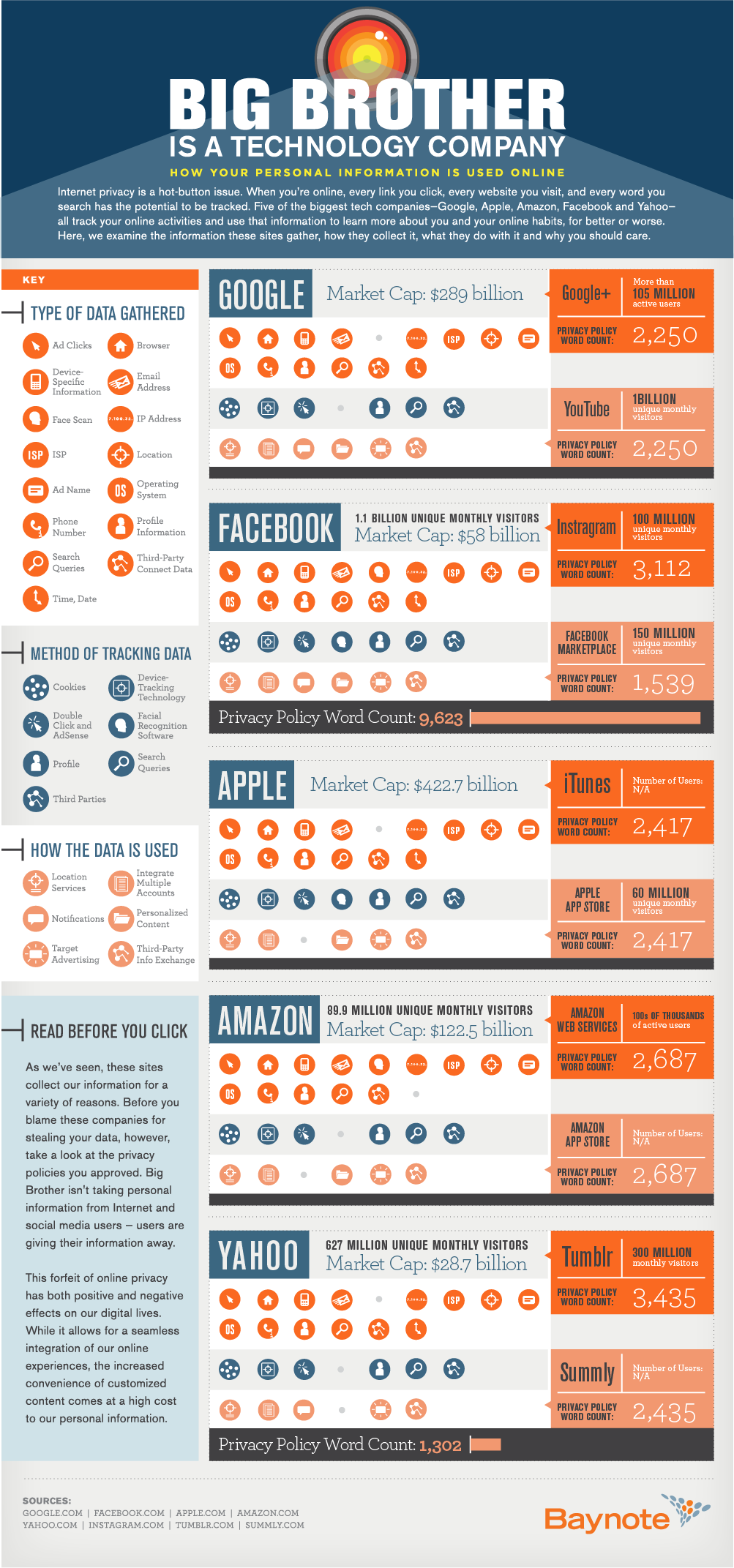
-

Who will install Windows 8.1?
Publié: juin 25, 2013, 5:55pm CEST par Wayne Williams
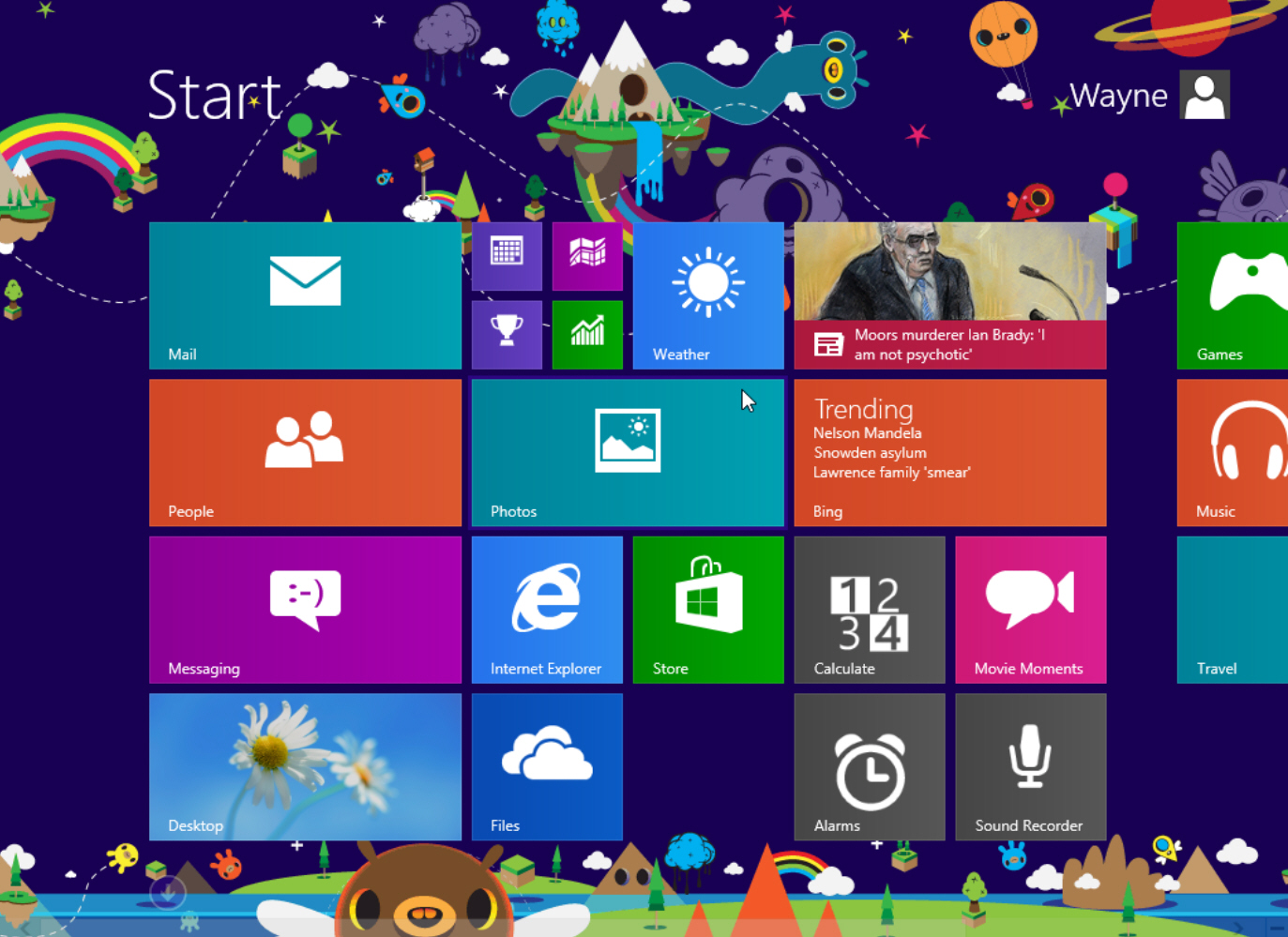
Microsoft will be releasing the Windows 8.1 Preview this week and we’re excited to finally get our hands on an official build, and try out the new features and improvements which the software giant has implemented in its quest to make its divisive operating system more appealing to the masses.
A week ago we asked you if you intend to install Windows 8.1. To date we’ve had just over 2,800 responses, so it’s a reasonable sample size given the time the poll has been up, and the results are interesting. The actual percentage between answers hasn’t changed much since around the 1,000 responses mark.
The first surprise is how many of you are currently using Windows 8. For an operating system viewed to be a failure, it’s astonishing really that 73 percent (2,052) say you have the OS installed. Of course BetaNews readers like to have the latest hardware and software, so maybe its adoption shouldn’t be that much of a revelation.
It’s worth pointing out that the numbers could be slightly skewed because users of Windows 8 will be more likely to respond to a survey about Windows 8.1 than users of another operating system, including Windows 7 or XP.
That said, it’s still a very healthy percentage of you using Windows 8, which Microsoft will no doubt be happy about.
Of the 73 percent who say they have Windows 8 installed, 56 percent (1,156) say they intend to install the preview upon its release. 41 percent (848) plan to be more cautious and wait for the full, stable version later in the year. 2 percent (48), for whatever reason, have no plans to install the OS update.
4 percent of the total number of poll responders (107) say at this point they don’t know if they will be installing Windows 8.1 or not. There’s no way of knowing how many of those uncertain voters already have Windows 8, but it’s unlikely to be many.
Of the 23 percent (650) of total responders not using Windows 8, a large 73 percent (478) say they have no intention of upgrading to Windows 8.1, suggesting Microsoft’s changes don’t go far enough, or those people simply don’t like the direction of the new OS. 26 percent (172) do, however, feel the concessions are enough to persuade them to join the tiled side.
Naturally, there are some interesting comments to go with the poll responses.
onlysublime makes a valid point in saying:
I would install the preview if not for the fact that when the real thing comes out, you have to reinstall all your apps and programs. If you go straight from win8 to 8.1 RTM, you do not have to reinstall anything.
barely_normal feels that a lot of people who have Windows 8, don’t actually like it much, and shares the following story:
My sister purchased an HP computer for her family, against my advice, because it was cheap. She now has something that is exactly that, which won't do what she had said she wanted it to do, but that is only part.
After not seeing them for about three months, I asked my nephew [12 years old] if he liked Windows 8. He said no, not really, and he got no inkling from me either way, so there was no poisoning of his honest thoughts. My son asked if he liked the Start screen, he said "No". He stated that he immediately bypasses it upon starting the computer.
My niece, a little older, but both a classic sheeple, and also wowed by colorful displays, says she likes it, as it is "faster" than their old machine -- in fact, it is not, but the newness has swayed her. In other words, she is the target customer that Microsoft wishes everyone would be.
That would seem to indicate how the "unwashed" feel about Windows 8, as it is roughly the same set of responses that I see many times from people. It is not something they feel so important to be vocally truculent, but it IS a huge annoyance that they will simply live with, as they are not experienced enough to know that they don't have to be led by the "wise" people at Microsoft. In other words, sheeple will pretty much do as their guided, but it does not mean that they like it.
I think a lot of us who know Windows over time would be much less vocal if we weren't getting the "improved" status along with the "new" about Windows 8. Microsoft should simply say "New and Different", and that way those of us who know better won't have to waste our time refuting the assertion of improvement.
Sounder’s comment is short and to the point:
I have Windows 7. Why should I downgrade to Windows 8?
Finally, johnrc2 has this to say:
I will install it on my Surface Pro and three laptops. I hope it fixes some of the outstanding issues I have with 8.0, and I hope it doesn't break Start8.
I have been using the Surface Pro almost exclusively as my Window 8 machine. When I went back to one of the non-touch laptops, it was painful and frustrating. I can better understand the problems many of you are experiencing. Windows 8 is really made for a touch device.
The poll is still open, so if you haven’t yet voted, please do so.
-

Google rolls out revamped Groups
Publié: juin 24, 2013, 9:36pm CEST par Wayne Williams
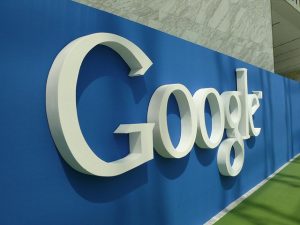 Google announces it is giving Google Groups an overhaul, retiring the old version and replacing it with a modern update with improved options for managing your groups as well as new moderation tools, and a mobile site.
Google announces it is giving Google Groups an overhaul, retiring the old version and replacing it with a modern update with improved options for managing your groups as well as new moderation tools, and a mobile site.Groups also now lets you create an inbox for collaboratively sharing, distributing, and tracking responsibilities with others.
According to a blog post, "Imagine you and a few friends are organizing an event for your school and want a single email address to coordinate with vendors, parents, and volunteers. Members of the group can work together to manage email, assign items to each other, and mark items resolved. This can be a great feature for teams seeking a really simple way to get things done without sharing passwords or losing track".
The new moderation tools are designed to make managing a forum "easier and faster" and include the ability to use canned responses.
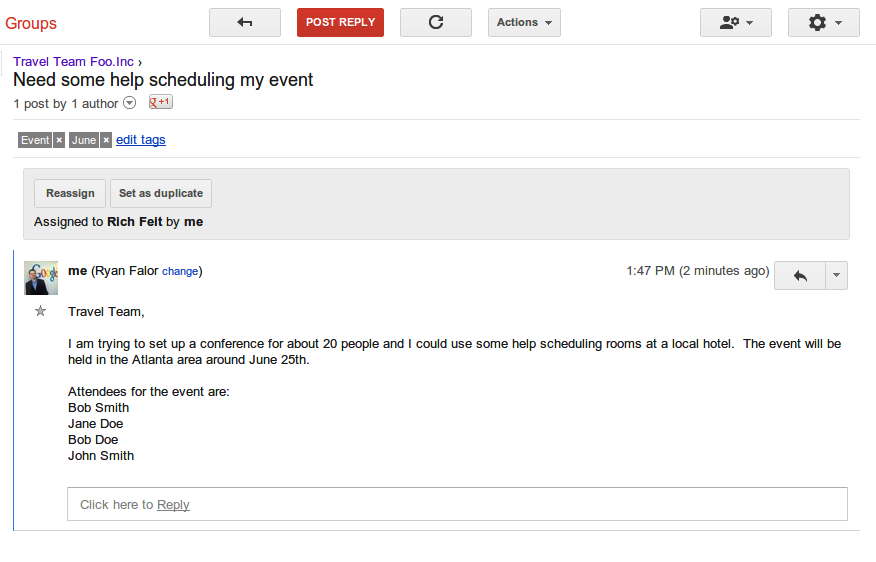
To help orientate past and future Groups users, Google has created a guide to the new Groups.
Do you use Google Groups? Impressed by the update?
Photo Credit: meneame comunicacions, sl
-

AOL takes the wraps off its own Google Reader replacement -- launches Monday
Publié: juin 22, 2013, 10:18am CEST par Wayne Williams
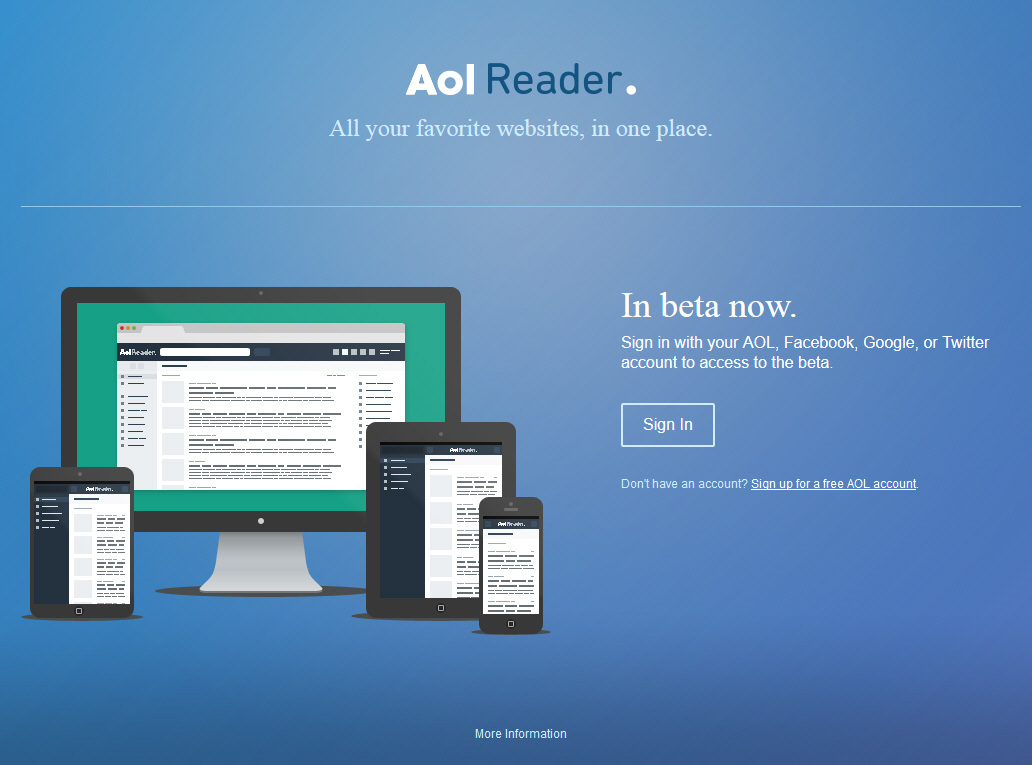
For years technology blogs have trumpeted the death of RSS, but it took Google shutting down Reader to reveal just how alive and well the platform truly is.
When my colleague Alan Buckingham expressed his dislike of Feedly, Google Reader’s heir apparent, he was bombarded with emails from other feed reading services requesting he give them a shot. Other firms, like Digg, are rolling out new services, and now AOL has announced its own Reader replacement.
I -- like most Google Reader users -- have tried several alternatives, but have yet to find one that really suits my tastes. I have high hopes for Digg’s project, but it’s AOL’s endeavour that has got me really excited -- and yes, I can’t believe I’m excited about AOL.
The new service is in private beta right now but it doesn’t matter because AOL Reader will be live from Monday so we’ll all soon be able to try it out for ourselves.
So what do we know about the service right now? Well you’ll be able to sign in with AOL, Facebook, Google, or Twitter credentials, and the service will offer a choice of views so you can view "your subscriptions as a simple list of headlines, a more visual grid of cards, an infinitely-scrolling page, or even like you would your email".
You’ll be able to import your feeds from Reader -- or another source -- and star and tag articles. The service will have its own API from the off too. There won’t be iOS or Android apps available immediately, but they are planned and will hopefully arrive soon.
Other planned features include sharing within AOL Reader and with other users, search (uh-oh -- that’s not implemented yet?) and notifications.
Does this look like the Google Reader replacement you’ve been waiting for, or have you already found a new home for your RSS needs?
-

Samsung Premiere 2013 -- Watch the event here
Publié: juin 20, 2013, 4:25pm CEST par Wayne Williams
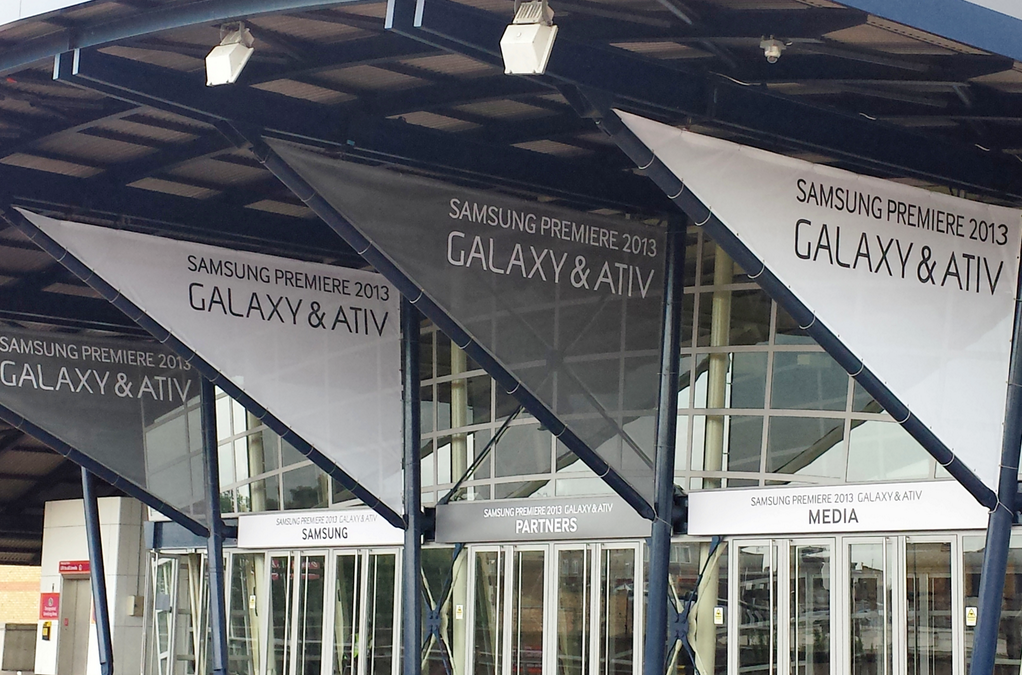
Samsung is set to launch some new products at its Samsung Premiere 2013 event at London’s Earl's Court tonight.
While we’re not sure exactly what to expect, we do know the South Korean tech giant will be unveiling new Galaxy and ATIV devices, and is promising a "glimpse into the future", whatever that cryptic hint may mean.
A Samsung event is always unmissable but don’t worry if you’re not in London, or haven’t received an invite, as you can tune in live here and watch all the action as it unfolds.
The event kicks off at 7pm UK time, which translates into 11am PDT and 2pm EDT.
-

Critics may have won the DRM battle, but Microsoft will win the Xbox One war
Publié: juin 20, 2013, 3:02pm CEST par Wayne Williams
 Yesterday, when I first heard the rumors that Microsoft was going to be dumping the Xbox One’s DRM restrictions -- dropping the regular internet checks and making it easier to share and trade games -- I was skeptical. But then news sites began reporting the story, citing reliable sources, and Microsoft removed the Xbox One Q&A page from its website -- clear confirmation big changes were afoot.
Yesterday, when I first heard the rumors that Microsoft was going to be dumping the Xbox One’s DRM restrictions -- dropping the regular internet checks and making it easier to share and trade games -- I was skeptical. But then news sites began reporting the story, citing reliable sources, and Microsoft removed the Xbox One Q&A page from its website -- clear confirmation big changes were afoot.Faced with a tide of anger from gamers, and overwhelming negativity towards certain aspects of its forthcoming entertainment console, Microsoft did something no one expected -- it reversed its stance on DRM and went back to the old ways. It was a surprising decision.
Microsoft could have easily ridden the wave of dissent, as it did with Windows 8, pushing its vision of the future, and trusting Xbox lovers would buy the console anyway. Gamers likely would have succumbed to the benefits offered by the new Xbox One, and the complaints as vociferous as they are now, would have died down considerably by the time the box actually went on sale.
Many people like to complain, and when presented with a cause, will happily jump on it. An offensive scene in a TV show might generate a handful of complaints from the viewing public, but if those complaints get picked up by the media, they will be amplified by the exposure, leading to more complaints, including plenty from people who never saw the show in question, but were outraged by the idea of it, or in some cases, outraged for the sake of being outraged.
Giving attention to a grievance is like adding oxygen to a flame, it will cause it to burn strongly and spread. Wait long enough though and that fire will burn itself out, leaving behind just ashes -- sooty remnants of rage.
If it had held its ground and waited, Microsoft would eventually have triumphed. Sure, it might have lost some early initial sales to Sony’s PS4, but ultimately by sticking to its guns, and selling the benefits of its forward thinking, in time I believe The Xbox One would have emerged on top.
Maybe Microsoft was feeling unnerved by the unending negativity directed towards Windows 8, maybe it realized that the "benefits" of the DRM restrictions in the Xbox One just weren’t worth the grief, or maybe (as it claims) it has started listening to its customers. It’s hard to know exactly the real reasoning for the U-turn. But yesterday Microsoft extinguished the fire that was raging around the Xbox One, by taking away the oxygen fuelling it.
That doesn’t mean it’s the end of the matter. Burning embers of resentment will remain. After all, the Kinect still has to be connected, and that will annoy some people, and yesterday’s changes kill the idea of sharing and reselling downloaded titles, which will sadden and maybe even anger certain gamers who were excited by the premise.
Last week I accused Microsoft of dropping the ball on Windows 8 and Xbox One by rushing into things and not listening to what its customers want (or think they want). Today that situation has changed. Microsoft has shown that it can respond and make major changes based on customer feedback to a product that has not yet launched.
That’s a good thing.
But hopefully it’s also not going to become too regular an occurrence. I would hate for Microsoft’s vision of the future to become too diluted by public comment. After all, as they say, a camel is a horse designed by committee.
Not that it's likely to happen of course. In its statement yesterday, Microsoft said:
We appreciate your passion, support and willingness to challenge the assumptions of digital licensing and connectivity. While we believe that the majority of people will play games online and access the cloud for both games and entertainment, we will give consumers the choice of both physical and digital content. We have listened and we have heard loud and clear from your feedback that you want the best of both worlds.
In other words, we bow down to your will this time, but we're still heading where we're heading, we're just going to take a slightly longer route.
So come on then, tell me what you think about Microsoft’s decision to remove the DRM restrictions -- did it simply lose its nerve and blink first, or was it a ballsy move designed to silence critics and give the Xbox One the best start possible? Comments below please.
Photo Credit: maraga/Shutterstock
-

Take a look at the revamped Store in Windows 8.1
Publié: juin 15, 2013, 8:28pm CEST par Wayne Williams
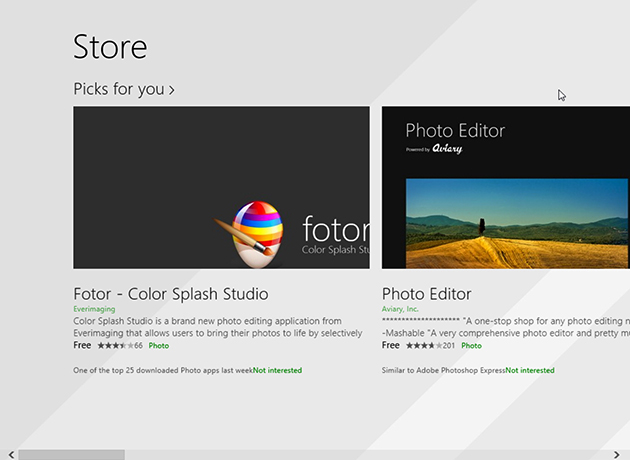
If you downloaded a leaked build of Windows 8.1 you’ll have noticed quite a few changes to Microsoft's new operating system, but there are still a lot more tweaks and features to come in the official preview build which will be released on June 26.
One of the new features is a revamped Windows Store, but unfortunately this wasn’t available to explore on the leaked builds. I say "wasn’t" because as of today you can now access and browse the store, and even download apps.
To access the store you need a Microsoft account, so if you’ve been using a leaked build without, now’s the time to add one.
You can browse the "Picks for you" section, as well as "Popular now", "New Releases", "Top Paid" and "Top Free". Clicking on a section will show you the top 40 apps, and you can select one to view more details.
Personally I think it’s a major improvement over the old Store design, and I really like it. Take a look at the screenshots, and let me know what you think in the comments below.

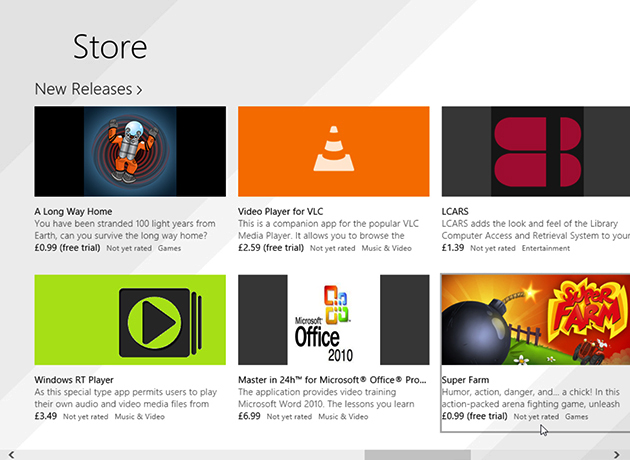
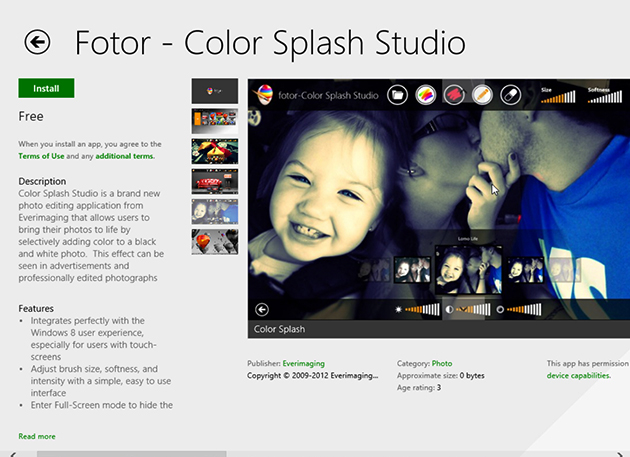
-

Vodafone UK’s new Smart Mini gives you the power of Jelly Bean for just £50 -- contract free
Publié: juin 13, 2013, 7:07pm CEST par Wayne Williams
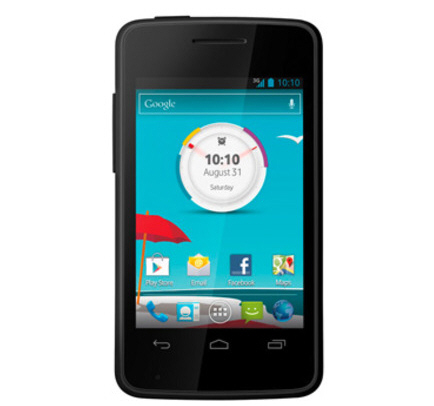 Great news for British Android lovers. If you’re in the market for a new mobile phone, but money’s a little tight right now, Vodafone’s new own-brand Smart Mini could be just what you’re looking for.
Great news for British Android lovers. If you’re in the market for a new mobile phone, but money’s a little tight right now, Vodafone’s new own-brand Smart Mini could be just what you’re looking for.One of the cheapest Android smartphones around, the device is understandably pretty low spec with a 3.5-inch 480 by 320 display, 2-Megapixel camera, 1GHz processor and 4GB of internal storage.
However it comes with a microSD card slot so you can expand storage by up to 32GB, and offers HSDPA connectivity, GPS, Wi-Fi b/g/n and Bluetooth 4.0.
It runs Android 4.1 Jelly Bean too, which should make it more appealing, and will only cost £50 on Pay As You Go. And you get free delivery. Not only that, but if you top up with a Freedom Freebee between now and the end of July you’ll get free mobile internet for 30 days.
Smart Mini is available to buy now and you can choose from any color so long as it’s black.
-

Hey Microsoft, here’s another ball! Try not to drop this... oh
Publié: juin 13, 2013, 5:33pm CEST par Wayne Williams
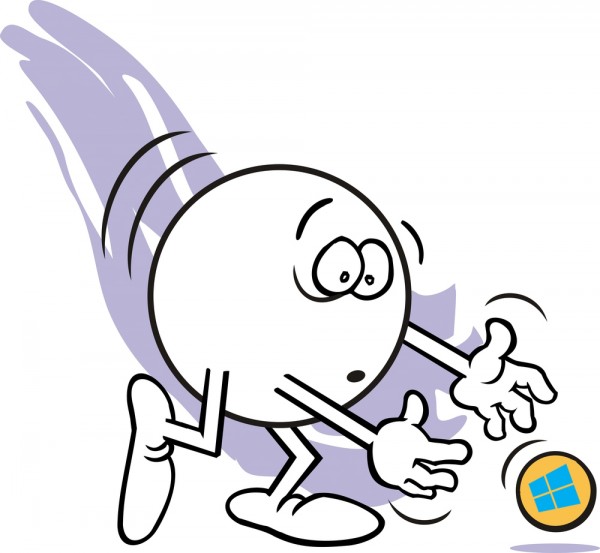 If I worked for Microsoft, and my sole job was to come up with products that divided opinion and alienated many previously loyal users, I reckon I would be due a promotion about now.
If I worked for Microsoft, and my sole job was to come up with products that divided opinion and alienated many previously loyal users, I reckon I would be due a promotion about now.While some divisions within Microsoft are doing a great job (Bing and Outlook.com spring to mind), you have to wonder what the bloody hell is going on when the tech giant is able to so badly foul up not only Windows but Xbox too.
Windows 8 was a brave step. Taking the OS in a new direction, making it suitable for tablets and fully embracing touch was a smart move, but one that was followed by lots of dumb decisions. Microsoft appears to have taken every single factor into account except one -- its existing customer base. It seems as if at no point did anyone involved in the operating system’s development or testing say, "Do you think customers will like that we’ve removed the Start button and menu, made things harder to use with a mouse, and forced users to discover where menus live before they can access them?" or "But what if they don’t want apps? If they want to just go to the desktop, run existing programs and, you know, multitask?"
With Windows 8.1 Microsoft says it’s listened to its customers. Why didn’t it do that before it released Windows 8?
Tami Reller, Windows division CFO, admitted in an interview with the New York Times that the Windows 8 learning curve is real. Of course it is. Microsoft rolled out numerous preview versions of the OS before releasing the full thing, so I'm sure that issue was mentioned, but at no point did anyone appear to make changes where changes blatantly needed to be made. "Here's a preview version, use it and feel free to provide feedback, but don't be too surprised when we don't listen to anything you say".
When the finished version of Windows 8.1 arrives we will likely get the OS Windows 8 should have been. But don't fool yourself into thinking Microsoft is going to take more of an interest in your keyboard and mouse PC. It isn't. I watched this video yesterday. It shows how "Windows brings it all to life on your Windows tablet, PC and phone". Notice the order of the devices -- Windows tablets first. When the video shows the PC, it's a computer without a mouse. Maybe Microsoft removed the pointing device for aesthetics, figuring it didn't look good in the video, or maybe it’s a subliminal message…
Xbone Headed
 You’d think following up a much loved games console like the Xbox would be hard to screw up, yet Microsoft seems to be doing a damn fine job of that too, alienating hardcore gamers -- the people who would usually rush to buy an Xbox -- by (initially at least) portraying it as an entertainment center rather than a games console.
You’d think following up a much loved games console like the Xbox would be hard to screw up, yet Microsoft seems to be doing a damn fine job of that too, alienating hardcore gamers -- the people who would usually rush to buy an Xbox -- by (initially at least) portraying it as an entertainment center rather than a games console.On top of that, the Xbox One isn’t backwardly compatible with Xbox 360 games, and treats everyone like a pirate, with restrictive copyright protection measures that require the device to connect to the internet at least once a day (or every hour if you're logged into someone else's games library) and by restricting the trading and selling back of games. It even comes with a camera that stares unblinkingly at you the whole time and can’t be disconnected. Because in the wake of PRISM who wouldn't want that? (I know Microsoft has addressed privacy concerns here, but still…)
With the Xbox One I wanted a games console that could also handle the entertainment side of things. What Microsoft is offering is an entertainment box which can also do games, provided you agree to some crazy terms and don't want to try and use it anywhere without an internet connection. At E3, Microsoft has pushed gaming heavily and won back some fans, but its design choices and attitude will have had plenty of people looking at the PS4 more favorably than they otherwise might have.
Lock Down
Eight months ago, before Windows 8 launched, I said that Microsoft wants to be Apple. I meant that it wanted a slice of the apps pie, a drink from the revenue stream that Apple has been slurping from so successfully for so long. But I think MS wants to be more like Apple in other ways too.
Apple keeps a firm grip on lots of aspects of its products. It makes devices which are less easy to upgrade or customize, it vets all the apps before they appear on the App Store (not always successfully) and it basically tells users how to use its products.
That’s essentially what Microsoft tried to do with Windows 8. It wants users to just accept the new tiled interface, buy touch devices, forget about the Start menu and not skip the Modern UI. But Microsoft customers are not like Apple ones. We're used to freedom, to doing things the way we want to -- so to be suddenly faced with an OS that works not how we want it to, but how Microsoft says it has to be, just jars badly.
And telling potential customers that if you don't like certain features of Xbox One to buy an eight year old gaming console instead is, frankly, a dick move.
Microsoft is pushing its vision on to users and really that’s how it should be. But when your vision is out of step with what many users want (or think they want at least), compromises need to be made. Don’t just rush into things.
Windows 8 could have been a halfway step between Windows 7 and a more radical Windows 9. It could have catered more for the existing audience, the keyboard and mouse users, while still being welcoming for the fledgling touch brigade at the same time.
Similarly, Xbox One should have put games on at least an equal footing with entertainment from the offset, and made the whole internet check-in just less... mandatory. Give people a choice. Not too much choice of course, but some at least.
Ultimately I think Microsoft’s vision with Windows 8 and Xbox One is right. But its approach is all wrong and doing the company -- and its devoted users -- no favors at all.
Agree or disagree with me? Leave your comments below.
Photo Credit: Johnny Sajem/Shutterstock
-

Google wants you to know it has nothing to hide
Publié: juin 11, 2013, 8:07pm CEST par Wayne Williams
 Google was one of numerous tech companies implicated in last week’s PRISM scandal, and despite issuing a carefully worded denial, many people still believe the search giant provides the NSA with unfettered access to its servers.
Google was one of numerous tech companies implicated in last week’s PRISM scandal, and despite issuing a carefully worded denial, many people still believe the search giant provides the NSA with unfettered access to its servers.Unhappy with the situation, Google has written a letter to the offices of the Attorney General and the Federal Bureau of Investigation, asking them to give the company permission to publish in its transparency reports at least some information about the FISA national security requests it receives. This will prove, Google hopes, that it complies with legal requests, but no more.
The letter is as follows:
Dear Attorney General Holder and Director Mueller
Google has worked tremendously hard over the past fifteen years to earn our users’ trust. For example, we offer encryption across our services; we have hired some of the best security engineers in the world; and we have consistently pushed back on overly broad government requests for our users’ data.
We have always made clear that we comply with valid legal requests. And last week, the Director of National Intelligence acknowledged that service providers have received Foreign Intelligence Surveillance Act (FISA) requests.
Assertions in the press that our compliance with these requests gives the U.S. government unfettered access to our users’ data are simply untrue. However, government nondisclosure obligations regarding the number of FISA national security requests that Google receives, as well as the number of accounts covered by those requests, fuel that speculation.
We therefore ask you to help make it possible for Google to publish in our Transparency Report aggregate numbers of national security requests, including FISA disclosures -- in terms of both the number we receive and their scope. Google’s numbers would clearly show that our compliance with these requests falls far short of the claims being made. Google has nothing to hide.
Google appreciates that you authorized the recent disclosure of general numbers for national security letters. There have been no adverse consequences arising from their publication, and in fact more companies are receiving your approval to do so as a result of Google’s initiative. Transparency here will likewise serve the public interest without harming national security.
We will be making this letter public and await your response.
David Drummond
Chief Legal Officer
What’s your take on the situation? Do you believe Google is as innocent as it proclaims to be?
Photo Credit: Jirsak/Shutterstock
-

Microsoft invites you to take a first look at Windows 8.1 in action
Publié: juin 5, 2013, 10:30am CEST par Wayne Williams
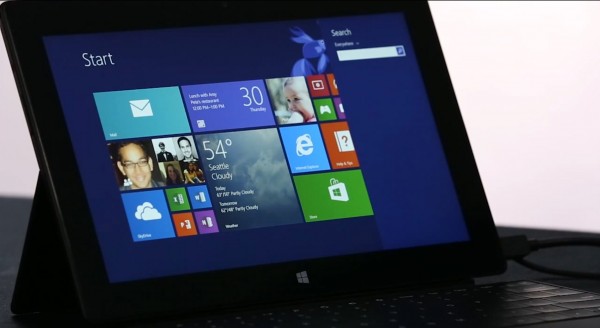
We've written a lot about Windows 8.1 lately. We covered what to expect, and reported on the return of the Start button, the official Windows 8.1 announcement from Microsoft, and most recently the changes the software giant has made to woo the enterprise. But unless you downloaded and played around with one of the early leaked builds, you won’t yet have seen the Windows 8 refresh in action.
Well, Microsoft has just released a "First look at Windows 8.1" video which provides a preview showing just some of the highlights to look forward to (or to absolutely despise, depending on your perspective).
The changes include the ability to turn the lockscreen into a cloud powered photo frame, new tile sizes, improved Apps screen, better Start screen personalization options, SkyDrive integration, multi-tasking, and a new search feature.
The video’s presenter, Jensen Harris from the Windows User Experience Team, doesn’t mention the return of the Start button, or show it, but that’s to be expected.
To go with the launch of the 4.31 minute clip, Microsoft has released a new blog post discussing the Windows 8.1 updates shared at Computex.
After watching the video, I have to say Windows 8.1 is looking pretty good. But what do you think? Are you excited to get your hands on the preview build when it arrives on June 26? As always, leave your comments below.
-

Got an hour to kill? Watch (nearly) every version of Windows being installed
Publié: juin 4, 2013, 7:52pm CEST par Wayne Williams
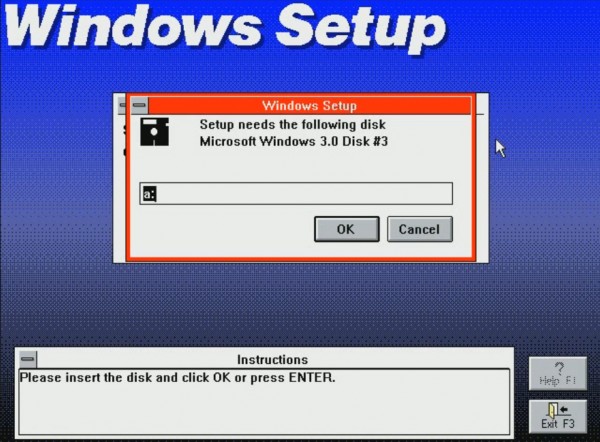
The first version of Windows I ever installed was Windows 3.1, and the most recent was a leaked build of Windows 8.1. In between those two points I’ve installed every new version of Windows Microsoft has produced, most more times than I care to recall.
The installation process has definitely improved over the years, but I shudder to think how much of my life has been spent waiting for each install and reinstall to complete.
I may never get those hours back, but I can now relive them (and waste another hour) by watching a video which shows almost every installation from Windows 1.0 all the way up to Windows 8.
The operating systems included in the video are:
- Windows 1.01
- Windows 2.03
- Windows 3.0a
- Windows 3.1
- Windows 95
- Windows 98
- Windows ME
- Windows XP
- Windows Vista
- Windows 7
- Windows 8 Pro
Windows 2000 is excluded because, as the video’s creator ZlotyObin points out, "it’s impossible to update Windows 2000 to ME and vice versa".
The video thankfully isn’t in real time, and you can skip ahead whenever you like. It does provide a fascinating trip down memory lane though, and shows clearly just how much Windows has changed and improved over the years.
What was the first version of Windows you ever installed?
-

Windows 8 adoption levels in the enterprise are shockingly bad
Publié: juin 4, 2013, 5:34pm CEST par Wayne Williams
 Microsoft is really pushing Windows 8.1 to businesses. As my colleague Ian Barker reported yesterday, the OS upgrade will offer a raft of new features targeted at the "world of cloud computing and connected devices, with enhancements for bring your own device (BYOD) connectivity, enhanced mobility features and security enhancements".
Microsoft is really pushing Windows 8.1 to businesses. As my colleague Ian Barker reported yesterday, the OS upgrade will offer a raft of new features targeted at the "world of cloud computing and connected devices, with enhancements for bring your own device (BYOD) connectivity, enhanced mobility features and security enhancements".If the global Windows 8 enterprise adoption data released by SysAid Technologies earlier today is to be believed, the software giant is really going to have its work cut out convincing firms to switch to the divisive OS.
According to SysAid Technologies, an Israeli global provider of IT Service Management (ITSM) solutions, six months after the official launch of Windows 8, a mere 0.53 percent of enterprise computers running a Windows OS are running Windows 8. Let me repeat that for you -- 0.53 percent.
Obviously such a figure is largely meaningless without context, which SysAid is happy to provide.
By comparison, six months after the official launch of Windows 7, IT Benchmark indicated that 11.3 percent of enterprise computers running Windows OS were running Windows 7, out of the 11.68 percent total market share (as reported by Net Applications).
Israel Lifshitz, Founder and Chairman of SysAid, explains his company’s findings, saying: "Statistics from Net Applications showed in April 2013 that Windows 8 had a usage share of 3.84 percent, however, our IT Benchmark data demonstrates that the majority of Windows 8 implementations are by consumers and not by enterprises. While it is clear that Windows 7 was a highly anticipated release, businesses are not at all eager to adopt Windows 8. It will be interesting to see if the upcoming Windows 8.1 launch will be attractive enough to increase adoption among enterprises".
Has your business switched to Windows 8, and if not are there any plans to do so? Tell us below.
Photo Credit: Art_girl/Shutterstock
-

Another reason to hate Gmail’s new tabs -- unavoidable adverts in your inbox
Publié: mai 31, 2013, 9:21am CEST par Wayne Williams

Yesterday my colleague Mark Wilson wrote a scathing article on Gmail’s new tabs feature. In it he complained about the total lack of customization options, the wonky sorting, and most damning of all -- the way it’s no longer possible to tell at a glance exactly how many new messages you have.
This morning, in checking my email -- with the tabs active -- I found another reason to hate the latest addition to the webmail service, and it’s likely the reason that Google even introduced tabs in the first place -- advertising messages in your inbox.
Filed away in the Promotions tab I discovered a new "email" advertising the Nexus 4. In the sidebar on the right, headed "What's this?", Google explains, "It's a new type of ad which you can forward to a friend, or star to save it to your inbox. If you dismiss this ad, you won't see it again".
There’s a Dismiss button right above the message. So it’s easy to get rid of the promotion, but only once you’ve opened it -- there’s no checkbox next to it like there is next to other messages. So this new type of ad is something you’re forced to interact with.
In returning to the Promotions tab to take a screenshot, I see I have two more of the new type of advert in there -- one from Vistaprint and the other from Godaddy. Refreshing again and those have been replaced by ads for Namecheap and Lumosity. It seems, at the moment at least, the maximum number of ads is limited to two.
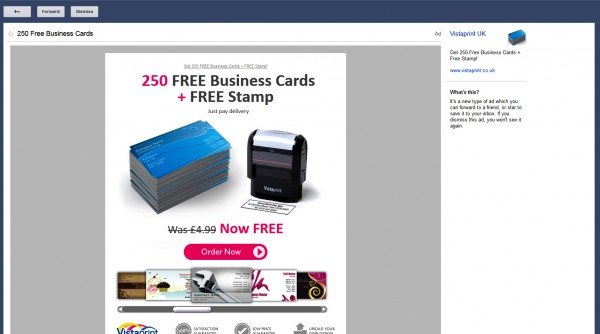
I use Outlook.com for all my personal email but I still log into Google Apps for work, and I wanted to give the new tabs a proper try. But now that I’ve discovered the real reason for those tabs in the first place, it’s time to turn them off.
If you feel the same, you can disable the feature by going into Settings, selecting Inbox and picking a different inbox type in the drop down. You can of course just disable the Promotions tab if you want to keep the new feature but avoid seeing the adverts.
Photo Credit: PhotostockAR/Shutterstock
-

Amazon launches its own login service for apps, games and websites
Publié: mai 29, 2013, 4:17pm CEST par Wayne Williams
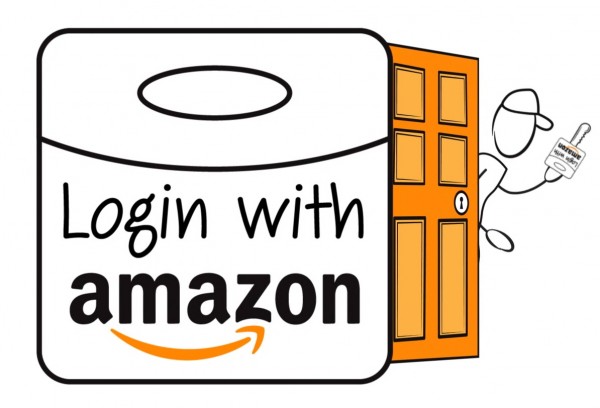
A few years ago, if you wanted to join a website you had to create a brand new account, enter your email address and come up with yet another password to try and remember. That’s all changed of course and now you can log into a vast amount of sites using existing credentials for services like Google, Facebook and Yahoo.
Today, Amazon adds itself to the list of services you can use to gain access to other sites with the introduction of Login with Amazon.
The official press release reads like the feature is something brand new and never been done anywhere before, which is quite amusing considering how late Amazon is to the single sign-on party. Still, another login option will always be welcome and provides a good alternative for anyone worried about how many sites they already access through Google and/or Facebook.
"Login with Amazon enables app developers and website owners to leverage Amazon’s trusted sign-in solution, allowing them to focus on providing a great experience for their customers," Michael Carr, Amazon Vice President, eCommerce Services said. "Amazon customers now have a hassle-free way to quickly and securely sign-in to apps, games and websites, without having to remember yet another password".
Amazon’s single sign-on feature can be used on websites and iOS and Android apps.
-

Xbox One to cost £600 in the UK -- says Amazon
Publié: mai 29, 2013, 2:49pm CEST par Wayne Williams
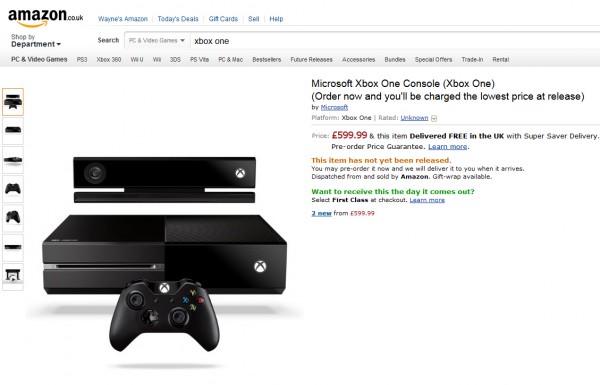 Although Microsoft has yet to officially reveal the price of its next generation games console, Amazon has decided to set the figure at £599.99 on its pre-order page.
Although Microsoft has yet to officially reveal the price of its next generation games console, Amazon has decided to set the figure at £599.99 on its pre-order page.This is considerably higher than most people would have expected -- closer to £400 would have been a reasonable guess -- and dwarfs the launch price of the Xbox 360 which cost gamers £209.99 for the core system back in December 2005.
Of course just because Amazon says it will cost £600, with free postage, doesn’t mean that’s how much interested shoppers will need to pay for the next generation device.
It’s likely to have been priced this high just so Amazon can send good news to pre-orderers when the real, much lower, figure is announced. The pre-order page does say "Order now and you'll be charged the lowest price at release", which is a good indicator that the figure Amazon has on its site is just a guestimate.
Amazon.com has yet to put up a pre-order page, but expect it to appear shortly.
How much would you be prepared to pay for the Xbox One? Will you be buying it at launch?
-

Give your Android device a Windows 8-style makeover
Publié: mai 28, 2013, 2:44pm CEST par Wayne Williams
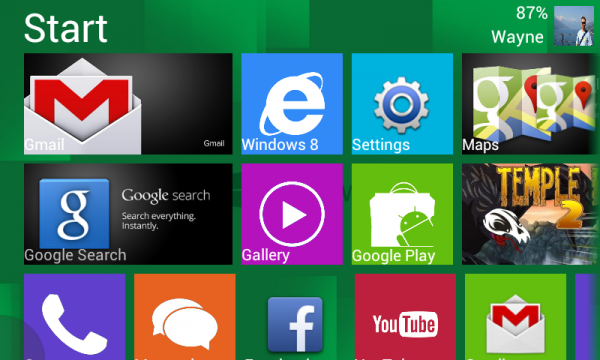
The Best Windows 8 Launcher, from PRR Apps, is a new app designed to bring the Windows 8 Modern UI experience to Android devices.
It offers two modes -- tablet and mobile -- with full screen support and is highly customizable. There are 150 downloadable images of apps you can use as tile backgrounds, as well as 50 Windows 8 style icons, and widget and live wallpaper support.
Once the app is installed it will take a little while to set up the first tile block as you’ll need to select various apps, such as Settings, Gallery, and SMS, when prompted. You can have a maximum of five blocks with up to 18 tiles in each one.
You’ll then need to further personalize things by setting your name and profile pic and adjusting the dimensions to suit your device’s screen size. You can also set the titles for the tile blocks and lock your phone into portrait or landscape mode. There’s an optional free tile images pack available to download.
Tiles can be customized -- you can stretch and shrink each one, change the colors and use your own images, if you wish. There’s no obvious way of reordering tiles however, and I’ve found the customize menu, which you call up by long pressing on a tile, sometimes refuses to appear.
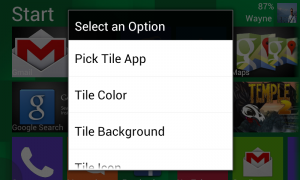 Still, for a first release, The Best Windows 8 Launcher is stable (the only comment so far on Google Play says the app won’t stop closing all the time, but it hasn’t yet crashed once on me) and well-designed. I expect the rough edges will be dealt with in future releases.
Still, for a first release, The Best Windows 8 Launcher is stable (the only comment so far on Google Play says the app won’t stop closing all the time, but it hasn’t yet crashed once on me) and well-designed. I expect the rough edges will be dealt with in future releases.The Best Windows 8 Launcher is available to download from Google Play now priced at $0.99.
-

Microsoft: Social networking is underestimated in the workplace
Publié: mai 28, 2013, 10:06am CEST par Wayne Williams
 According to a new survey conducted by research firm Ipsos for Microsoft, many employers are at odds with their employees when it comes to social networking.
According to a new survey conducted by research firm Ipsos for Microsoft, many employers are at odds with their employees when it comes to social networking.The global survey, among 9,908 information workers in 32 countries, found that while 46 percent of employees believe social tools help with productivity, 34 percent of companies undervalue the benefit of such technology in the workplace.
As a result, 17 percent of respondents say they ignore their organization’s IT policy and install social tools on their work computers or phones, and 31 percent say they would be willing to spend their own money to buy social tools to help them do their jobs.
The survey found the tools were most used for communicating with colleagues (68 percent), sharing and reviewing documents (50 percent), and communicating with customers and clients (47 percent), but they were also useful for growing a professional network (36 percent) and finding an expert or information within their own company (29 percent).
Perhaps the most damning aspect of the survey was 39 percent of respondents felt people in their organizations just didn’t collaborate enough.
"Just as email accelerated the pace of business in the ’90s, enterprise social will be the driver of greater agility and transformation in the 21st century workplace," Kurt DelBene, president, Microsoft Office Division believes. "As we look ahead at how collaboration and communications continue to evolve, we believe the tools people use today -- email, instant messaging, voice, videoconferencing, social -- will come together and be deeply integrated into apps in ways that will speed collaboration and truly transform the way people work".
To go with the survey, Microsoft has launched a new site called The Worldwide Water Cooler, which allows people from any country to have their say on social tools and workplace collaboration.
Photo Credit: ra2 studio/Shutterstock

-

Microsoft has a huge Windows 8 app problem
Publié: mai 27, 2013, 4:14pm CEST par Wayne Williams
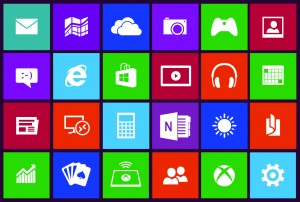 A few days ago, cloud-based PC management service Soluto released a study into the habits of 10,848 Windows 8 users, and found that consumers really aren’t running apps all that regularly on the new operating system.
A few days ago, cloud-based PC management service Soluto released a study into the habits of 10,848 Windows 8 users, and found that consumers really aren’t running apps all that regularly on the new operating system.According to Soluto, "on average, a Windows 8 user will launch a Metro app 1.52 times a day. Tablet users launch the most Metro apps at 2.71 times per day".
Soluto also found that among desktop and laptop users, 60 percent of people launch an app less than once a day. Presumably the only tile they click on the Modern UI is the one that takes them through to the desktop. Or maybe they have a third-party Start button installed and don’t ever see the new UI.
I use Windows 8 for at least eight hours a day, five or six days a week, but I’ll admit I can often go for very long stretches without launching a single app. Although I have the free Adobe Photoshop Express installed in the Modern UI, I’ve only ever used it once. Even for simple tasks I prefer to launch the actual Photoshop from the desktop. I might not need anywhere the power it offers, but it’s good to have it on hand.
And once I’m working on the desktop, I have no real need to go back to the Start screen because I have a browser window with likes of Outlook.com, Facebook, and Google Reader permanently open in tabs, on my second monitor.
The Windows 8 app experience often isn’t a great one truth be told. Lots of apps are just websites presented differently or cut down versions of better programs. The few occasions I’ve used the Modern UI version of Internet Explorer I’ve felt as if it’s designed for people who don’t really use the web much.
Low app usage, coupled with the lack of big name apps, is clearly a problem for Microsoft. And it’s a vicious circle. Lack of official apps, leads to lack of app use, leads to the lack of official app creation. Certainly, in the case of Windows 8 on the PC, there isn’t a great need for apps based on websites, when you can fire up the actual website and get the full experience. And not all apps need clicking on anyway -- sometimes the information that appears on a live tile is all you need at that moment.
Soluto’s survey also found that most of the apps people were using were the ones supplied with the operating system. Out of the top 12 the most tried and used apps, all bar one (Netflix, at number 8) were from Microsoft. (Just as an interesting aside, Soluto found the most engaging app was Yahoo Mail -- the company’s reasoning for this is Yahoo mailers find it easier to use the app than work out how to set up their mail in Windows 8).
So we’ve got a lack of official apps, people mostly using the ones baked into Windows 8, and a vast proportion of users just not bothering with apps at all. Which clearly isn’t good news for Microsoft -- if Soluto’s findings are reflected across the entire Windows 8 user base, that is.
Many of the BetaNews audience are Windows 8 users, so I’d find it interesting to hear your views on the app situation. Do you use apps regularly (and if so, how often and which ones) or do you tend to bypass them altogether? Comments below please.
-

Internet Explorer Q&A: The 'browser you loved to hate' is making a comeback
Publié: mai 24, 2013, 1:44pm CEST par Wayne Williams
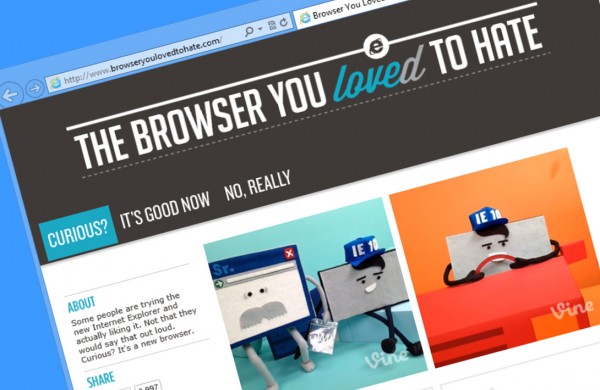
Internet Explorer’s tight integration into Windows 8, coupled with the fact that IE10 is actually pretty good, means the veteran browser is enjoying something of a resurgence these days. Humorous advertising poking fun at the browser’s past (while distancing itself from it) has also encouraged many ex-users to take a fresh look.
I chatted with Internet Explorer’s Marketing Manager Rebecca Wolff about the "Browser you loved to hate" campaign, asked her what major changes we can expect to see in IE11, and found out why embracing web standards is now a major priority for Microsoft.
BN: Has the "Browser you loved to hate" campaign changed public opinion of Internet Explorer?
RW: We’ve seen some great feedback from the community on the campaign and our videos like "Do you know this guy?" and "Child of the 90s." In a little over a year since we launched the campaign, we’ve had over 35 million total video views worldwide, so we know we’re reaching some new users and reconnecting with some old ones, hopefully piquing their interest about the entirely new Internet Explorer. IE has been posting some of its highest share numbers in years the past few months, so that’s pretty encouraging too.
BN: Are there any areas where you know you can be doing better?
RW: When it comes to the web, it can never be fast enough and safe enough, so even where we’re leading in performance like hardware accelerated graphics and malware protection with SmartScreen, we know we’ll just keep investing. We see touch performance as the new measuring stick for fast, so we hold the bar very high for what great touch performance for the real web means -- pages that pan and zoom with buttery smoothness and a user experience that really embraces the great capabilities of new mobile touch devices like Surface.
BN: Any major changes to look forward to IE11?
RW: We don’t have any additional information on future versions of IE or Windows to share today, but suffice it to say it’s going to build on a lot of the great work we did with IE10. Of course, if you want just a little hint, there’s always this Vine…
BN: Do you have any idea of how the browser is being used in Windows 8 -- by which I mean, what percentage are using the Modern UI version vs. desktop.
RW: We’re getting great feedback from our customers on both experiences, and the immersive experience in the Windows 8 UI is getting particularly high marks from people for things like gaming, watching movies or reading web content. People also tell us how much they like multi-tasking with it -- snapping a web page alongside another app, for example. We don’t typically provide percentage breakouts for usage, but our internal telemetry from millions of Windows 8 users through the opt-in customer experience program shows that tablet users spend the majority of their browsing time in the Windows 8 UI, which is great since we built the modern IE10 experience to be perfect for touch on a tablet.
BN: What are the challenges of developing two versions of the same browser?
RW: IE is one browser -- one HTML5 engine, one JavaScript engine, one networking stack -- with user experiences that are optimized for both the immersive, touch-first Windows 8 UI and the Windows desktop. We have a point of view that your experience of the web shouldn’t be compromised on modern touch devices. Getting the touch experience right, with great touch performance for the real web, with pages that pan and zoom, a really fluid feel and a user experience that fully respects the needs of new mobile touch devices; that’s a challenge. The team wrote a blog on that recently that’s worth a read since it talks about some of the things we did to make sure the touch experience was really great.
BN: What kind of innovations will we see in future versions of Internet Explorer?
RW: We don’t have any specific information on future versions of IE to share, but touch will continue to be a big area of focus for us. As more and more touch devices come to market, we want to keep raising the bar on responsiveness and the best ways to experience web browsing on modern, touch devices.
BN: Will we get to see the Chrome and Windows 8 style login and sync feature added to IE?
RW: Again, we can’t speak to any new features coming to future versions of IE just yet, but I think our customers are going to like what they see. We do currently sync your IE Favorites (or bookmarks), Pinned Sites, and browser history across Windows 8 PCs that are connected to your Microsoft Account.
BN: Why can’t newer versions of IE run on Windows XP?
RW: Starting with IE9, we started to really take advantage of both a modern OS like Windows 7 and modern PC hardware -- tapping into things like the GPU with hardware acceleration. With both IE9 and IE10, we want to ensure users have the best possible experience, which means being on modern hardware with a modern OS -- so that we can offer features like hardware accelerated HTML5.
BN: Why the sudden interest in HTML5 and other assorted open web standards?
RW: We know all too well about the issues of a single browser ecosystem and the barriers that creates for innovation. We don’t want to go down that road again and so we really started to change things up with IE9. That was a significant release for us in terms of showing our commitment to supporting web standards, and we continued that with IE10, which has a 60 percent increase in supported modern web standards. We’ve also doing more to help developers write cross-browser and cross-platform with tools and resources like modern.IE, and providing examples -- including code samples -- of what can be done on the web through experiences like the The Hunger Games Explorer and Contre Jour. This will continue to be a huge focus for us moving forward too.
BN: Any features you admire in other browsers?
RW: We’ve been pushing support for modern web standards and interoperability across all browsers for some time now. It’s great to see the continued development to these standards and the specs that come out from standards bodies like the W3C from the folks at Google, Mozilla, Apple and Opera. You may have seen this recently with the cross-platform pointer events work. With this common goal of having the same markup run across all browsers, web developers can spend less time worrying about coding to a particular browser and instead spend more time building great web sites and web experiences. I’d also give a shout out to Mozilla’s efforts around privacy and how there are trying to better protect users online with privacy protections in Firefox.
-

KiSSFLOW adds quick action workflow buttons to Google Apps
Publié: mai 22, 2013, 4:15pm CEST par Wayne Williams
 Last week at Google's annual I/O conference in San Francisco the web giant launched a new feature called quick actions for Gmail which recognizes certain types of messages and lets you take immediate action on them directly from the inbox -- RSVP to an invitation, or quickly see flight info for example.
Last week at Google's annual I/O conference in San Francisco the web giant launched a new feature called quick actions for Gmail which recognizes certain types of messages and lets you take immediate action on them directly from the inbox -- RSVP to an invitation, or quickly see flight info for example.Third-party developers are able to add their own actions, and OrangeScape announces it is doing exactly that with its self-service workflow builder, KiSSFLOW.
KiSSFLOW lets users build business workflows that flow through various departments like Finance, HR, Marketing and Administration. Adding the quick action functionality will allow workflow users of Google Apps to respond to notifications, and complete tasks like "Approve", by clicking the button displayed in the message’s subject line.
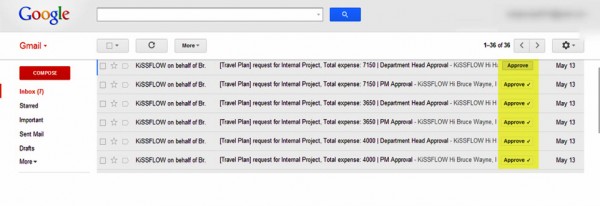 "Working with its ecosystem of partners, Google continually adds exciting, user-centric new capabilities that take the maturity of the Google Apps platform to new levels," said Dinesh Varadharajan, head of KiSSFLOW at OrangeScape. "With this release of new quick actions, KiSSFLOW is thrilled to work closely with Google to provide simple yet powerful self-service workflow for Google Apps customers. Unlike some of the other products that have a portion of their users on Gmail, KiSSFLOW users are 100 percent Gmail users -- our entire user base is going to love this new capability".
"Working with its ecosystem of partners, Google continually adds exciting, user-centric new capabilities that take the maturity of the Google Apps platform to new levels," said Dinesh Varadharajan, head of KiSSFLOW at OrangeScape. "With this release of new quick actions, KiSSFLOW is thrilled to work closely with Google to provide simple yet powerful self-service workflow for Google Apps customers. Unlike some of the other products that have a portion of their users on Gmail, KiSSFLOW users are 100 percent Gmail users -- our entire user base is going to love this new capability".KiSSFLOW is priced at $3.00 per user, per month and is available in the Google Enterprise Marketplace.
Photo Credit: Dmitriy Shironosov/Shutterstock
-

Inteliscope lets you mount an iPhone on your favourite tactical firearm
Publié: mai 22, 2013, 3:17pm CEST par Wayne Williams
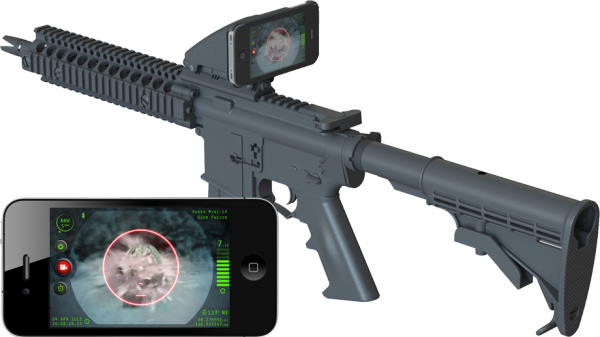
You can buy plastic guns designed to add a touch of realism to first person shoot-em-ups on the iPhone. Just slide in your device, and use the screen to view the action and pull the gun trigger to fire. The Inteliscope is kind of like that, but instead of letting you attach your iPhone to a plastic gun, it’s designed to be used on real tactical firearms.
To clarify, it isn’t a game, rather it’s a "combination of a tactical rail mount for an iPhone or iPod and an app that brings critical ballistics and environmental insight to the shooter in real time". Among the features on offer is the ability to "shoot around corners with no head exposure". Handy.
The device, designed and assembled in Sandpoint, Idaho, apparently attaches to any firearm with a Picatinny (Mil-STD-1913) or Weaver tactical rail and features a portable quick-release protective cover for your iPhone.
The app’s on-screen HUD is packed with features including:
- Intuitive User Interface
- Custom Crosshairs
- 5X Digital Zoom
- Video Recording from the Shooter’s Perspective
- Ballistics and Firearm Data
- Built-in Compass
- GPS Position
- Local Prevailing Winds
- Shot Timer
- Flashlight and Strobe using Built-in LED
The Inteliscope is scheduled to launch in June and is available for preorder now, priced at $69.99. There are versions for the iPhone 5, iPhone 4/4S and iPod touch.
No word on an Android release, yet.
-

Missed yesterday's big Xbox One reveal? Watch it here
Publié: mai 22, 2013, 12:19pm CEST par Wayne Williams
Microsoft yesterday took the wraps off its next generation games, TV and entertainment console at a special event held at the Microsoft Xbox campus and we streamed it live right here.
Don Mattrick, President of the Interactive Entertainment Business at Microsoft, kicked off the event unveiling the Xbox One, a name that dispelled many myths about Infinity, 720 and 8.
If you wanted to watch the live unveiling but were unable to due to more pressing things -- like work perhaps -- don't worry. You can catch up on it here at your leisure. The hour long video is definitely worth watching, and because the presentation is no longer live, you can skip ahead to the really good bits.
-

Ziff Davis snaps up NetShelter from inPowered
Publié: mai 20, 2013, 3:14pm CEST par Wayne Williams
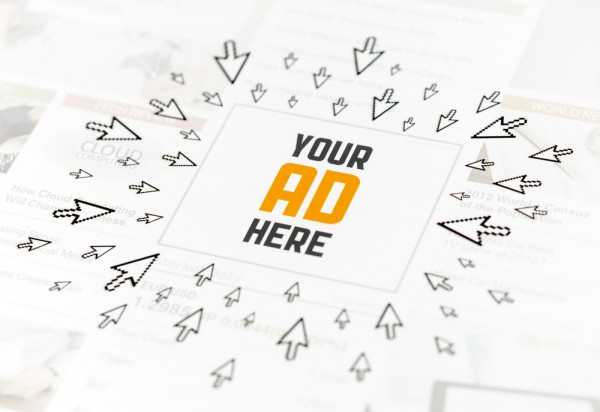 NetShelter, a digital advertising network that focuses on tech publications, has been purchased by Ziff Davis for an undisclosed sum.
NetShelter, a digital advertising network that focuses on tech publications, has been purchased by Ziff Davis for an undisclosed sum.The name and activities of the company may not be familiar to you, but it’s responsible for delivering nearly 16 billion ad impressions per year on 150 consumer and business tech sites, including BetaNews, SlashGear, TechSpot, CrackBerry, Android Central, MacRumors and Neowin.
The purchase makes a lot of sense for Ziff Davis and adds at least 155 million global readers to the company’s growing ad sales portfolio.
Vivek Shah, CEO of Ziff Davis, said: "The acquisition of NetShelter fully returns Ziff Davis to the dominant market position in the technology vertical. We will combine our best-in-class ad targeting capabilities and trading desk expertise with what our marketers need most today: High-quality, high-impact inventory that's available at scale on trusted sites frequented by tech enthusiasts."
Photo Credit: bloomua/Shutterstock
-

Microsoft wants you to get to know Windows 8
Publié: mai 18, 2013, 7:45pm CEST par Wayne Williams
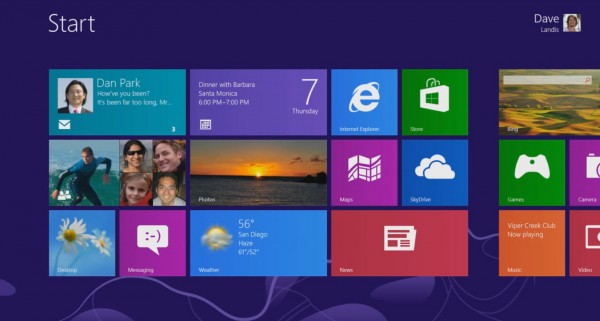
Speaking to the New York Times a couple of weeks ago, Tami Reller, Windows division CFO, admitted that the Windows 8 "learning curve is real" and said that Microsoft will be addressing the issue in Windows 8.1.
Perhaps in response to that public admission, Microsoft has released a video showing how to use the polarizing operating system. Called "Get To Know Windows 8" it’s aimed at anyone who might be thinking of upgrading, or who needs a little guidance.
The 3:25 minute video walks you through the Start screen, showing how to add, rearrange and remove tiles, and how to get to the desktop. It explains how to open the charms, as well as search, share photos, print content, and make adjustments to your PC.
It’s actually very instructive, but it seems odd that it’s taken until now to release a video like this. And of course some would say it’s a failure of design that the operating system needs an instructional video in the first place.
Update: While the video was only uploaded a couple of days ago, two people have told me they've seen it before on the Microsoft site, so it's likely not new -- just dusted down and given a potentially wider audience.
-

Everything you need to know about Windows 8.1
Publié: mai 17, 2013, 2:17pm CEST par Wayne Williams
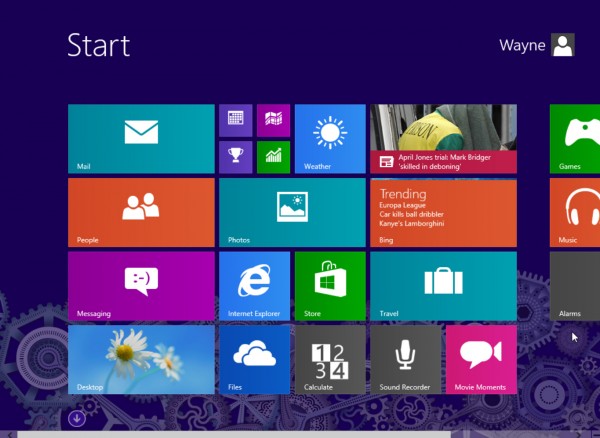
Microsoft is working on an update to Windows 8 and RT and will be releasing a preview version of it in June (in time for the Build developer conference), with the full release expected before the year’s end. The software giant has confirmed three things for definite about the update: its name (Windows 8.1), its price (free), and where you’ll be able to get it from (the Windows Store).
But thanks to early build leaks and statements from Microsoft, we also know quite a bit about the many changes the new release will bring to the polarizing operating system. Here’s a rundown of what to expect.
Tile Sizes
The leaked 9374 build of Windows 8.1 showed two additional tile sizes -- a larger one that’s double the size of the largest one in Windows 8, and a smaller one that’s a quarter of the size of the current smallest tile.
Personalize
The Settings charm has a new Personalize option that will let you change the Start screen background, and choose a different color and/or accent color.
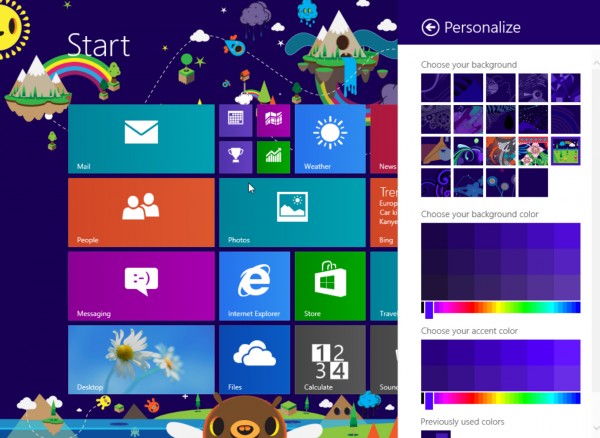
Split-screen apps
Windows 8.1 will improve multi-tasking by letting you run two apps side by side, with each app taking up one half of the screen. If you have a large high-resolution display you’ll also be able to run three or four apps on screen.
Swipe Up
Swiping upwards on the Start screen will reveal your apps list, and you’ll be able to sort the apps by Name or Date Installed. A handy addition.
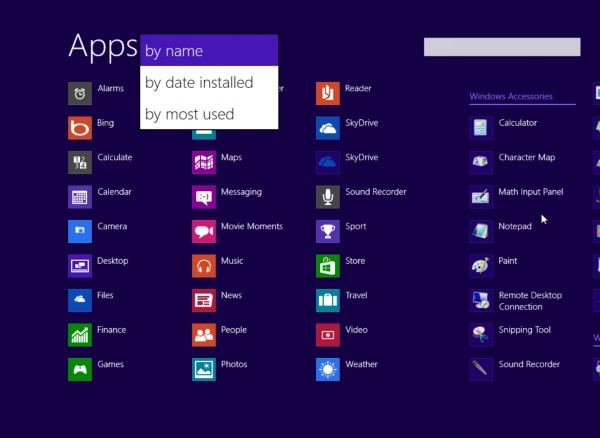
Internet Explorer 11
Microsoft’s browser is being updated and will include Do Not Track protection, upgraded developer tools, and will probably support WebGL and SPDY. The Modern UI version will have an integrated download manager.
Support For Smaller Screen Sizes
Microsoft reportedly believes there’s a demand for iPad Mini-sized tablets running Windows and so has been working to make sure Windows 8.1 displays well on smaller screens.
Automatic Desktop Scaling
The Windows 8 desktop display scaling issue should be fixed in 8.1, with the update offering auto scaling based on screen size and pixel density. A slider will let you adjust things to suit your tastes (and eyesight). You will of course still be able to adjust things manually.
Assigned Access
The leaked 9374 build included a Kiosk Mode that lets you lock down Windows to a single app -- making it useful for Media Centers, or for showing a particular app in a public place. In the most recent leak, 9385, the Kiosk feature was renamed Assigned Access.
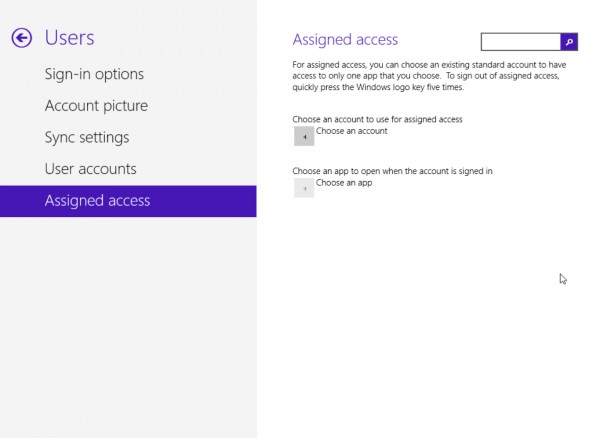
SkyDrive
The leaked builds show SkyDrive as a more integrated option and suggest you’ll be able to back up your PC data to the cloud.
Lock Screen
Windows 8 can display status and notification information on the lock screen. Windows 8.1 adds the ability to add an alarm. It also lets you use the lock screen as a picture frame.
New Apps
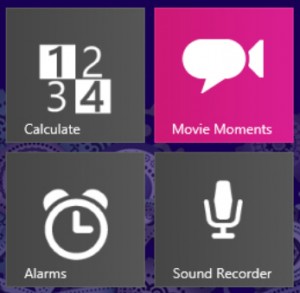 The update will include some new and improved apps, such as Alarms, Calculate, Sound Recorder, and Movie Moments (this last one lets you trim a scene from a video, add captions, and share it with friends). Leaked build 9385 also revealed the Camera app is being worked on with quite a few changes, including a new panorama feature that looks like Photosynth.
The update will include some new and improved apps, such as Alarms, Calculate, Sound Recorder, and Movie Moments (this last one lets you trim a scene from a video, add captions, and share it with friends). Leaked build 9385 also revealed the Camera app is being worked on with quite a few changes, including a new panorama feature that looks like Photosynth.New Drivers
Because what would a system pack update be without lots more of these?
Improved Touch
Touch will still be the primary focus in Windows 8.1, so expect lots of refinements here.
A Start Button
Microsoft hasn’t yet confirmed the return of the Start button in Windows 8.1 and there’s been no sign of it in any of the leaked builds. There have been lots of rumors about it though, with some people claiming it will be a traditional Start button with a Start menu, and others just that it will be there purely to open the Start screen.
In an interview with The Verge last week, Tami Reller, Windows division CFO, admitted Microsoft was aware of the outcry for a Start button. "We have heard that, we definitely have heard that and taken that into account," she said, before adding: "We've really also tried to understand what people are really asking for when they're asking for that".
Oh dear. Has Microsoft really not grasped what people have been requesting since before Windows 8 even launched? A Start button, Tami, with a Start menu attached.
Boot To Desktop
Again, we don’t know for certain if this option will make an appearance in 8.1, but the ability to skip the Modern UI screen is a request Microsoft is more than aware of.
Windows 8.1 – A Work In Progress
At the end of last week, Frank Shaw, Microsoft’s Vice President of Corporate Communications said:
Unlike a can of soda, a computer operating system offers different experiences to different customers to meet different needs, while still moving the entire industry toward an exciting future of touch, mobility, and seamless, cross-device experiences.
We are going to keep improving Windows 8, as we do with all our products, making what’s good even better. There will be new devices, new use cases, new data that makes us think, "Hey, we should do more of this, or less of that". And we will. There will be people who agree, strongly. There will be those who disagree, equally strongly. All good, all expected.
With his reference to a "can of soda" Shaw is of course alluding to the New Coke comparison that a lot of people have made about Microsoft’s new operating system.
It’s clear from what Shaw and Reller have both said that Windows 8.1 won’t be the full back down that a lot of people have been hoping for. Rather it will serve to refine and improve the Windows 8 experience to make the OS more palatable and easier to use, as well as introducing some appealing new features.
Will it go far enough to persuade the doubters to make the switch from Windows 7 (or earlier)? We’ll just have to wait and see. As always leave your thoughts and comments below.
-

Apple reveals the 50 billionth app download winner
Publié: mai 16, 2013, 4:00pm CEST par Wayne Williams
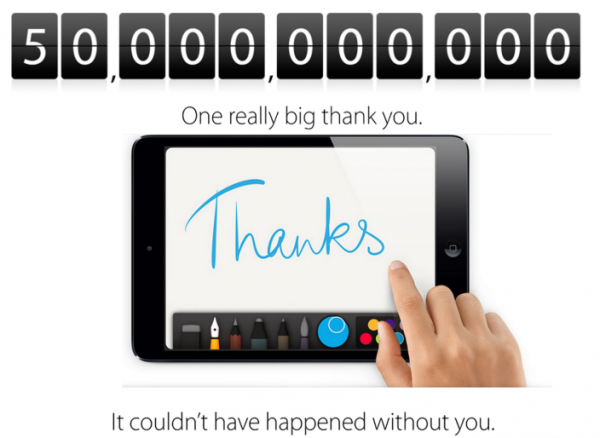
It’s been a while coming. Two weeks ago my colleague Alan Buckingham wrote that Apple was fast closing in on a remarkable milestone -- 50 billion unique downloads (excluding re-downloads and updates) from the App Store -- and said the "big event seems destined to take place within the next 24 hours".
It actually took around 14 days from that point for the 50 billionth download to happen (or be announced at least), and for the winner of the $10,000 App Store gift card Apple put up as a prize to be revealed.
The lucky downloader was Brandon Ashmore from Mentor, Ohio who claimed his spot in Apple’s record book by downloading Say the Same Thing by Space Inch (personally I was hoping it would be the Condom Size penis-measuring app).
In making the announcement, Apple revealed the usual amazing statistics, including that App Store customers are now downloading more than 800 apps per second at a rate of over two billion apps per month.
Eddy Cue, Apple’s senior vice president of Internet Software and Services said, "Apple would like to thank our incredible customers and developers for topping 50 billion apps downloaded. The App Store completely transformed how people use their mobile devices and created a thriving app ecosystem that has paid out over nine billion dollars to developers. We’re absolutely floored to cross this milestone in less than five years".
-

Google launches Google Play Music All Access
Publié: mai 15, 2013, 7:12pm CEST par Wayne Williams
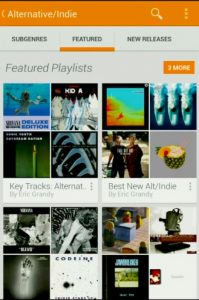 Google has just announced a new on-demand subscription music service called Google Play Music All Access. The service, which is available on Android and the web, gives users access to a massive library of millions of tracks. Google’s Chris Yerga calls it "radio without rules".
Google has just announced a new on-demand subscription music service called Google Play Music All Access. The service, which is available on Android and the web, gives users access to a massive library of millions of tracks. Google’s Chris Yerga calls it "radio without rules".It allows you to explore songs from all of the major record labels, listen to it like a radio station, provides Google-powered recommendations, charts and playlists, and blends your personal library with Google's. Everything from your Google Music locker is pulled into the new service.
All Access is launching in the US today, and will be arriving in other countries shortly. It will cost $9.99 a month, but there's a free 30-day trial available so you can try it out before tying yourself into a regular subscription. Start a trial by June 30 and Google will give you a discount and just bill you $7.99 a month. A sweet incentive.
Apple has been rumored to be considering a similar service for a while now, but clearly Google has beaten the fruit-logo company to the punch.
What do you think of the new service? Will you be signing up?
-

Watch the Google I/O 2013: Day 1 Keynote and Android Sessions live here
Publié: mai 15, 2013, 6:05pm CEST par Wayne Williams
Google is holding its Google I/O day 1 keynote at 9am PT and you can watch it right here on BetaNews.
We will of course be bringing you stories covering all the big announcements as they happen.
Rumors of what to expect include a revamped Google Maps, Android 4.3, a new music service set to rival Spotify, and even a Google branded Galaxy S4. Let’s see which of those comes true.Sit back and enjoy the fun. And feel free to comment as the keynote unfolds.
-

Microsoft UK offering a free cover with all Surface RT purchases
Publié: mai 15, 2013, 2:53pm CEST par Wayne Williams
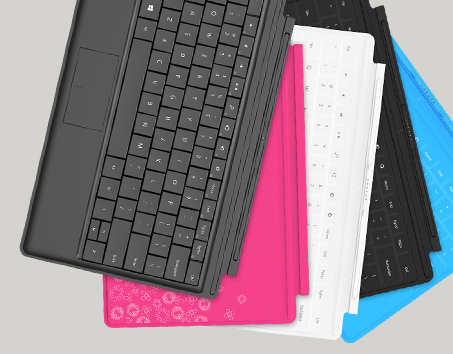 If you live in the UK and are thinking of purchasing Microsoft’s Surface RT tablet, now is the time. Pick up one through the Microsoft Store or a participating retailer (which in terms of brick and mortar sellers means John Lewis) and you’ll get a Touch or Type Cover thrown in for free.
If you live in the UK and are thinking of purchasing Microsoft’s Surface RT tablet, now is the time. Pick up one through the Microsoft Store or a participating retailer (which in terms of brick and mortar sellers means John Lewis) and you’ll get a Touch or Type Cover thrown in for free.It’s a very good deal, as you’d be looking to pay around £100 if you were to buy a cover separately. You can pick up the 32GB tablet-only version of Surface for £399 at the moment.
The offer, which is only available for residents of the United Kingdom, is valid on all Surface RT purchases made between now and 30 June.
John Lewis offers the Type Cover in black, and the Touch covers in white or blue. Buy from Microsoft however, and you get a much wider selection, including limited edition covers (Skulls, Flowers, and Year of the Snake).
Of course before you rush off and place your order, it’s worth remembering that the more powerful Surface Pro will be arriving in the UK sometime at the end of this month.
-

Microsoft confirms Windows 8.1 name, will give it away for free
Publié: mai 14, 2013, 5:52pm CEST par Wayne Williams
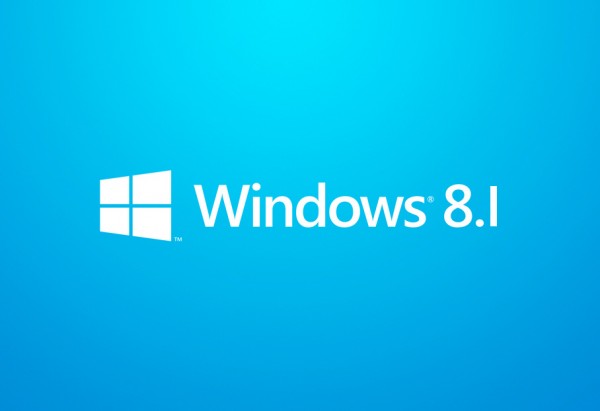 On Monday I said Windows 8’s ‘failure’ is still a win for Microsoft and talked about the upcoming update -- codenamed Windows Blue -- speculating that it would be priced cheaply like a Mac OS-style upgrade, rather than be given away for free.
On Monday I said Windows 8’s ‘failure’ is still a win for Microsoft and talked about the upcoming update -- codenamed Windows Blue -- speculating that it would be priced cheaply like a Mac OS-style upgrade, rather than be given away for free.Turns out I was wrong. Today Tami Reller, Windows division CFO announced at the JP Morgan Technology, Media & Telecom Conference in Boston that the update will be called Windows 8.1 and be entirely free for existing Windows 8 users, as a download through the Windows Store.
The official name comes as no surprise. Windows Blue was only ever a codename (and far too much of a reminder of the infamous Blue Screen of Death) and as my colleague Alan Buckingham pointed out at the time, the leaked Windows Blue build 9374 referred to itself as Windows 8.1 in the Computer Properties window.
As well as sharing these two nuggets of information about the highly anticipated update to the divisive OS, Tami says that Windows 8.1 will help Microsoft to "deliver the next generation of PCs and tablets with our OEM partners and to deliver the experiences customers -- both consumers and businesses alike -- need and will just expect moving forward". She didn’t say whether the update would include a Start button, Start menu, or the option to skip the Modern UI altogether, but it’s a fair bet we’ll see at least some changes in that direction.
A public preview of Windows 8.1 will be released on June 26, timed to coincide with the Build developer conference in San Francisco, and be available for both Windows 8 and Windows RT.
The fact that Windows 8.1 will be a free upgrade is interesting. Is it a move designed to help overcome much of the negativity that exists regarding Windows 8, or will all future Windows 8x/9x updates be available for free, as System Packs have been in the past? Time will tell.
What are you hoping to see in Windows 8.1?
-

Sorry Microsoft, I’m switching back to Google (but not entirely)
Publié: mai 3, 2013, 11:08am CEST par Wayne Williams
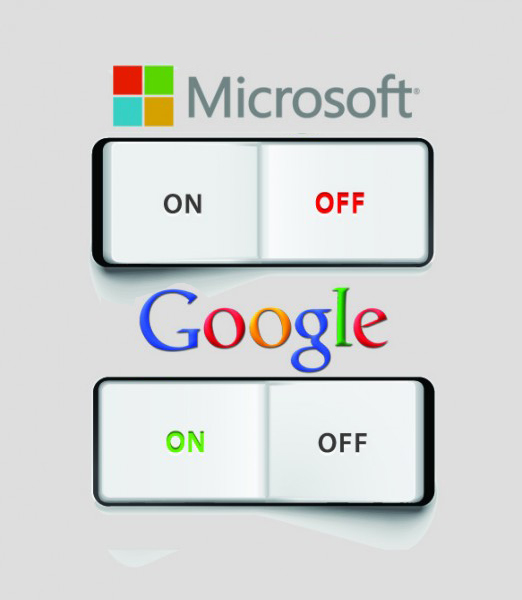 Fifth in a series. Nearly two months ago I gave up Google and switched to Microsoft. Although I tried not to have any preconceptions, I’ll be honest and say I thought (based on past experience), I’d be swapping a set of mostly superb products and services for a collection of inferior alternatives and hate every moment I was away from Google.
Fifth in a series. Nearly two months ago I gave up Google and switched to Microsoft. Although I tried not to have any preconceptions, I’ll be honest and say I thought (based on past experience), I’d be swapping a set of mostly superb products and services for a collection of inferior alternatives and hate every moment I was away from Google.That turned out not to be the case. Now my experiment is over, I find myself impressed with some elements of Microsoft’s offerings, but frustrated with others. So here’s a summary of my overall experience.
Configuring everything took a little while, and there were hiccups along the way, but that’s to be expected -- I’ve been using Google’s services for years and while Microsoft’s versions are understandably similar, they aren’t (for the most part) exact clones.
I’ve covered my experience with Bing previously, and while I like Microsoft’s search site, it’s too much of a compromise for me to use permanently. In order to get the most from it I need to change my country from the UK (where I live) to the US (where I don’t). I don’t understand why Microsoft has decided to create a pretty decent search site with lots of cool features, and then only made a fraction of those features available outside of America. I assume it’s a money thing -- the company wants to put all of the available resources into its largest market -- but even so it’s frustrating.
So as much as I like Bing, I have no real choice but to switch back to Google. For now at least.
I say "for now" because that could well change in the future. I recently chatted with Bill Hankes, Director of Bing Public Relations at Microsoft (you’ll be able to read the full interview on Monday) and he told me that Bing is looking to expand its offerings globally and will announce more details when available. Which all sounds very positive.
Goodbye Gmail
I’ve written about my experience with Outlook.com, and I’m still enjoying using the service, so I’m going to stick with it for now. But I’ll be honest, there are some things about it that frustrate me.
While I still get the occasional piece of spam in my inbox, far worse is when clearly genuine mail -- filtered by Gmail beforehand -- gets junked. SmartScreen still seems pretty dumb at times, but it has gotten better over the two months I’ve been using it and I’m confident it will eventually get as good as Google’s spam detection. Or nearly as good anyway.
Even though I’m not a massive Skype user, the integration of the chat service into Outlook.com gives me a further incentive to stay. (As an aside, I find it interesting that while most of Bing’s best features are currently American-only, Skype for Outlook.com was rolled out in the UK first).
IE10 -- Better Than Expected
Internet Explorer has a reputation for being the best browser… for downloading other browsers with. That’s unfair. Once you’ve configured it how you like it, it’s actually not a bad program. There are some elements I really like, such as the tab implementation, and security and privacy tools. Its HTML5 and CSS3 support is very good, and the browser is obviously integral into Windows 8. But IE is simply not for me. Although I appreciate the ability to pin sites to the Windows 8 Start screen, I can’t use the Modern UI version because that’s not how I work. I’ve currently got 15 browser tabs open at the moment, and that’s very light for me. I usually have a crazy amount of tabs on the go.
Although I had no real problems with using the desktop version of IE on a daily basis, the truth is I miss the extensions I take for granted on Chrome so I’m switching back to Google’s browser.
Summing Up
My experience over these past months has taught me that Microsoft’s services aren’t bad. In fact they are mostly pretty good, and you could easily switch to using them full time if you’re prepared to overlook a few problems here and there. My swap was never about boycotting Google as part of some grand gesture, so I have no problem with going back to using its browser and search services once more.
Although Google’s recent actions, like closing Reader and making all roads lead to Google+, are irritating as hell, the search giant gets away with it because it produces mostly excellent products and services for free.
I’d certainly understand if any readers did decide that enough was enough and choose to make the break away from Google. To those people I’d say the transition is easier than you might think. Outlook.com and Bing are good straight trades and Internet Explorer is a decent browser -- provided you use Windows 8 and don’t require any extensions that aren’t available (although you could just use Firefox).
The interesting thing for me now will be whether, once I’ve gone back to Google, I start missing Microsoft…
Photo Credit: Pixotico /Shutterstock
-

Google’s self-driving cars gather nearly 1GB of sensor data every second -- would you trust them?
Publié: mai 2, 2013, 12:46pm CEST par Wayne Williams

While all the press attention is focused on Google Glass, there’s another even more life-changing invention continuing to be developed and refined at Google. The company’s self-driving cars have already driven more than 400,000 miles without an accident (there have been two crashes -- in the first the Google car was rear-ended at a stop light, and in the second it was being driven by a human).
Although they won’t likely become commonplace on our roads for another 15 to 20 years, make no mistake, driver-less cars are the future, and will have lots of benefits. Aside from reducing accidents, they’ll be able to travel much faster -- no need for speed limits -- and give passengers (and we’ll all be passengers) time to do other things. Forget working from home, you’ll be able to work from your car.
Eventually it will also mean driving under the influence will be a thing of the past, as will road traffic cops.
Of course it all depends on how well, and how quickly, our governments embrace the idea. Will we see secondary super-fast roads just for driverless cars? Will self-driving vehicles be allowed to drive on regular roads alongside human drivers (certainly that’s the goal)? And will human drivers eventually be outlawed?
It still seems very much like a science fiction story, but it’s very real, and at the weekend Google dropped an interesting snippet of information. In order to intelligently make decisions, its self-driving cars gather some 750MB of sensor data every second.
In a LinkedIn post today, Bill Gross, founder and CEO of Idealab shared an image of what Google’s self-driving car "sees" while it is about to make a left turn. He says:
It is capturing every single thing that it sees moving -- cars, trucks, birds, rolling balls, dropped cigarette butts, and fusing all that together to make its decisions while driving. If it sees a cigarette butt, it knows a person might be creeping out from between cars. If it sees a rolling ball it knows a child might run out from a driveway. I am truly stunned by how impressive an achievement this is. I believe that this is an UNDER-hyped revolution in the making.
He also posted another image from the same set.

There’s no question Bill Gross is right. This is an under-hyped revolution in the making, but is it one that drivers will embrace? Maybe in 15-20 years we’ll be so plugged in that we won’t think twice about handing over the keys to a computer chauffeur. But at the moment I think certainly outside of the real gridlocked cities, people like to drive and trust in their own abilities behind the wheel.
If you’re in a car, and you suddenly see an accident up ahead, would you trust a computer -- with all its high-tech data gathering sensors -- to make the right choice to avoid it, or would you prefer to be the one taking action?
I’d love to know your thoughts on this subject, so leave your comments below.
-

Google brings its Web Fonts to the desktop
Publié: mai 1, 2013, 4:58pm CEST par Wayne Williams
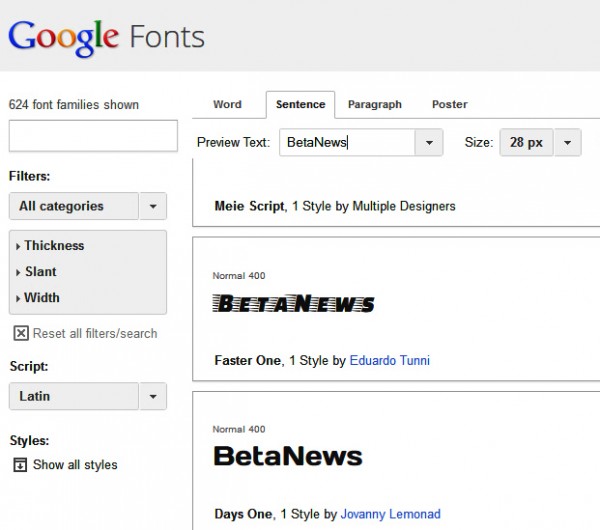 Google Fonts is a collection of open-source typefaces designed to make websites look more appealing. The set includes fonts with names like Caesar Dressing, Faster One, and Oleo Script Swash Caps.
Google Fonts is a collection of open-source typefaces designed to make websites look more appealing. The set includes fonts with names like Caesar Dressing, Faster One, and Oleo Script Swash Caps.Starting from today the web giant is making these fonts available for use on the desktop (Windows and Mac). You can use them in your own creations, but just as importantly by having them stored locally on your system, your browser won’t have to download them, which will save a little time. And we all know how important speeding up the web is to Google.
You’ll be able to install and sync all of the typefaces from the directory through SkyFonts, a Monotype tool which automatically updates installed fonts, ensuring you always have the latest versions at hand.
However, if you’d rather download the source files to edit the font data directly, you can do so at the Google Code project.
-

Submit your questions for the Internet Explorer team
Publié: avril 29, 2013, 2:02pm CEST par Wayne Williams
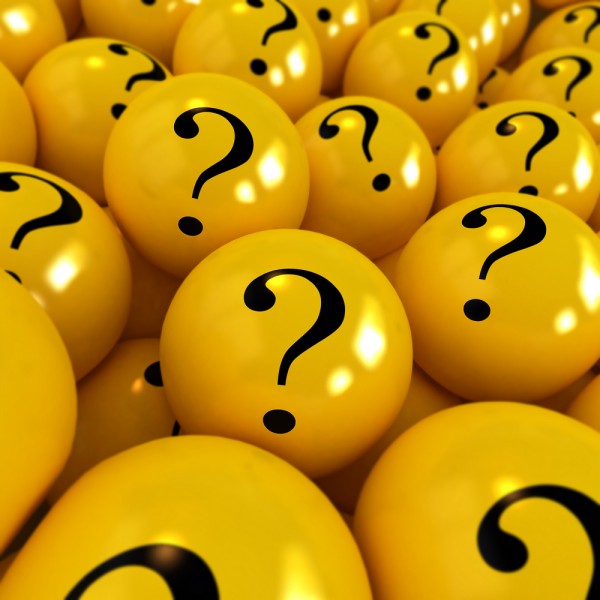 Usually when I do a Q&A session with tech firms like IBM, The Raspberry Pi Foundation, and Vonage, I come up with the questions myself, picking topics I think will be of most interest to our readers. However, for my forthcoming interview with the Internet Explorer team I want to shake things up a bit.
Usually when I do a Q&A session with tech firms like IBM, The Raspberry Pi Foundation, and Vonage, I come up with the questions myself, picking topics I think will be of most interest to our readers. However, for my forthcoming interview with the Internet Explorer team I want to shake things up a bit.So instead of compiling the list of questions myself, I’d like your help and input. If you've a burning question you'd like the IE team to answer, post it in the comments below.
Questions can be about anything -- as long as they’re Internet Explorer related, obviously. If you want to know if the team has any plans to implement a currently missing feature, or are wondering about possible changes to the Modern UI version in Windows 8.1, ask away. The IE team can also answer marketing questions, such as who came up with The Browser You Love to Hate campaign, and how it’s doing.
I'll pick the best selection to put to the team, and share their answers in a future post. You can ask as many questions as you’d like.
Over to you.
Photo credit: Franck Boston/Shutterstock
-

ZoomBoard is a clever QWERTY keyboard for smartwatches
Publié: avril 29, 2013, 11:12am CEST par Wayne Williams

If the rumors are to be believed, every company in the tech world is currently working on a smartwatch. Apple was among the first to be linked to a wrist device, but since then we’ve heard similar development stories concerning Samsung, Microsoft, Google, and LG, to name just a few.
Assuming at least some of those rumored watches come to fruition, the developers are going to have to find a way around the issue of typing on a tiny smartwatch face, but researchers from Carnegie Mellon University, Pittsburgh, Pennsylvania, have come up with what they think is an ideal solution.
ZoomBoard is a tiny QWERTY-based keyboard that lets you zoom into the key you want with a single tap, making it easier to accurately select each letter. The number of zoom levels can be adjusted, depending on how large your fingers are. Spaces can be inserted by tapping on the space bar or by swiping right. Deletions are achieved by swiping left, while swiping upwards will reveal symbols.
The developers ran a text entry study on a 16 x 6mm keyboard (smaller than a US penny) and report that "after eight practice trials, users achieved an average of 9.3 words per minute, with accuracy comparable to a full-sized physical keyboard. This compares favorably to existing mobile text input methods".
You can watch a video of ZoomBoard in action here, or if you prefer a more hands-on approach, you can try it out for yourself. The simulation works fine on Chrome and Internet Explorer, but didn’t seem to function properly on Firefox, for some reason.
I found ZoomBoard makes typing pretty easy. Let me know what you think of it in the comments below.
-

Samsung unifies its PC line under the ATIV brand, rolls out two new Book models and SideSync software
Publié: avril 26, 2013, 11:41am CEST par Wayne Williams
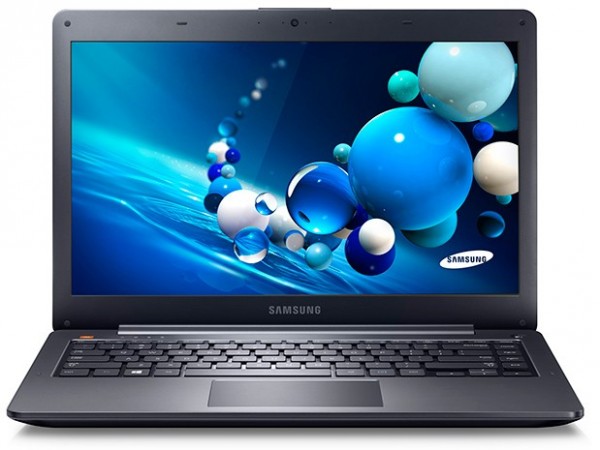 Samsung has announced it will be expanding its ATIV brand name to cover all of its Windows PCs, not just its convertible PC devices. The aim is to create a single cohesive brand for all its Windows 8 products, in a similar way to how the Galaxy brand unifies all of its Android smartphones.
Samsung has announced it will be expanding its ATIV brand name to cover all of its Windows PCs, not just its convertible PC devices. The aim is to create a single cohesive brand for all its Windows 8 products, in a similar way to how the Galaxy brand unifies all of its Android smartphones.In addition to the rebranding, Samsung has rolled out two new ATIV Book models -- the ATIV Book 5 and ATIV Book 6.
Described as the "next generation of Samsung Ultrabook", the Book 5 comes with a 14-inch touchscreen with a resolution of 1366 by 768, Intel Core i5-3337U processor, Intel HD Graphics 4000 GPU, 4GB of RAM, 500GB of storage and 24GB of ExpressCache. It’s available for pre-order now, priced from $899.99. The Book 6 has a 15.6-inch touchscreen with a resolution of 1920 by 1080, Intel Core i7-3635QM processor, AMD Radeon HD 8770M GPU, 8GB of RAM and 1TB of storage. It will set you back from $1199.99.
As if that wasn’t enough, Samsung is also adding a new feature to bring the ATIV and Galaxy lines closer together. Called SideSync, it is designed to make it easier for customers to switch from working on a PC to their smartphone by connecting the two devices via a USB cable. According to the South Korean firm, when connected, users can "respond to a text on a mobile phone from their PC keyboard; view maps, photos and multimedia from their phone on their PC screen; make edits to files on their phone via their ATIV PC; and even drag and drop files from one unit to another".
SideSync will come pre-loaded as a desktop app on Windows 8 ATIV PCs and be compatible with all of Samsung’s Android-based devices.
"Samsung has been the fastest growing PC brand for the past three years, in part because of our commitment to developing solutions that meet and exceed the ever-evolving needs of our customers," Mike Abary, senior vice president of consumer IT product marketing at Samsung Electronics America explains. "Our expanded ATIV brand and the introduction of solutions like SideSync create the necessary synergy between our mobile and PC lines to create real ease of use for consumers. These synergies enable us to maintain our momentum and continue to offer our customers innovations that enhance the way they live and work".
-

‘Child of the 90s’ ad watched 28 million times, but has it changed people’s views on Internet Explorer?
Publié: avril 25, 2013, 2:23pm CEST par Wayne Williams
 Microsoft gets a lot of press coverage for its Scroogled campaign, but little of it positive. Fortunately, the software giant has other advertising strategies that people do like, one of the better ones being The Browser You Love to Hate for Internet Explorer 10.
Microsoft gets a lot of press coverage for its Scroogled campaign, but little of it positive. Fortunately, the software giant has other advertising strategies that people do like, one of the better ones being The Browser You Love to Hate for Internet Explorer 10.As part of that campaign, Column Five, a creative agency in Newport Beach, California was tasked with coming up with an internet commercial and the result was a nostalgic romp through 1990s that hit 28 million views in just three months and earned it a Webby nomination (voting for that ends today).
To celebrate racking up an impressive number of views in such a short time span, Column Five has posted a behind the scenes look at the creation of its Child of the 90s video which explains the strategy, how it was put into practice, and why it worked.
To sum up, the agency wanted to come up with an ad that was appealing, newsworthy and share-worthy -- which it certainly is.
Explaining how it helped the brand, Column Five says:
If all we cared about was getting content noticed, we would film cats roaming around the office all day and slap a logo at the end of the video. But this wouldn’t help Microsoft -- and our goal is always to be impactful for the brand. With Internet Explorer, we wanted to change how Gen Y felt about the browser. We wanted the video to be a walk down memory lane, to feel conversational and familiar. We wanted the audience to think, "Maybe Internet Explorer can relate to me better than I thought; the new browser could exceed my expectations".
We certainly wanted to drive viewers to the site to rediscover Internet Explorer. But even if they didn’t, by sharing the video, they were sharing the story -- a story inextricably connected to Internet Explorer, a story that might not lead everyone to switch browsers that day, but that would linger and grow in a generation’s mind. That story has been told more than 27 million times to date, and that’s the impact we wanted more than anything: a reframing of IE’s relationship with Gen Y.
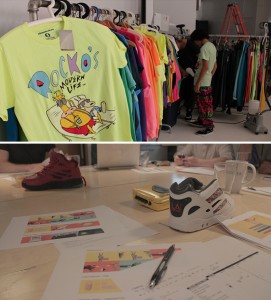
Sadly the video has the comments disabled on YouTube. It would have been good to read viewers' nostalgic recollections, but seeing as any online commercial for Microsoft and/or Internet Explorer usually brings out the trolls -- and not the crazy-haired plastic variety featured in the video either -- it’s easy to understand why the IE team made that decision.
I personally have something of a love/hate relationship with nostalgia -- I created Retro Gamer magazine in the UK, but also co-authored The Crap Old Days -- and although I loved the video, it didn’t make me want to try out Internet Explorer (even though, ironically, I ended up doing so anyway).
What did you think of the ad? Did it make you think "Maybe Internet Explorer can relate to me better than I thought; the new browser could exceed my expectations"?
-

Symantec: Majority of businesses believe BYOD is ‘worth the risks’
Publié: avril 25, 2013, 12:16pm CEST par Wayne Williams
 Not every business embraces BYOD (Bring Your Own Device). The reasons for rejecting it are usually down to security concerns -- firms are understandably worried about their data falling into the wrong hands if the device gets lost or stolen once it leaves the building.
Not every business embraces BYOD (Bring Your Own Device). The reasons for rejecting it are usually down to security concerns -- firms are understandably worried about their data falling into the wrong hands if the device gets lost or stolen once it leaves the building.Security specialist Symantec surveyed 236 attendees at this year’s Symantec Vision, its annual user and technical conference held at the MGM Grand in Las Vegas, to find out how companies were handling BYOD, and despite the small sample size the results were interesting:
59 percent of respondents report that while their employers encourage BYOD, they don’t allow them to run the same productivity apps used on corporate-owned devices.
42 percent of employees use a personally owned mobile device for business, regardless of company policy.
83 percent of organizations still allow employees to use personally owned devices (such as mobile phones) for business use.
While 80 percent of organizations enforce their policies, only 68 percent use technology to do so and 11 percent rely on Human Resources, using an honor system or information supplied by other employees.
The majority of organizations reported at least one security incident within the past 12 months, including:
- Lost or stolen devices (60 percent)
- Spam (60 percent)
- Malware infections (43 percent)
- Phishing attacks (40 percent)
- Exposure of confidential information (19 percent)
Despite this, Symantec says 70 percent of organizations felt that the benefits of mobility remain "equal to or greater than the risks and challenges associated with having mobile devices".
Photo Credit: olly/Shutterstock
-

Switching from Google to Microsoft, part 4 -- In with the Bing
Publié: avril 24, 2013, 3:45pm CEST par Wayne Williams
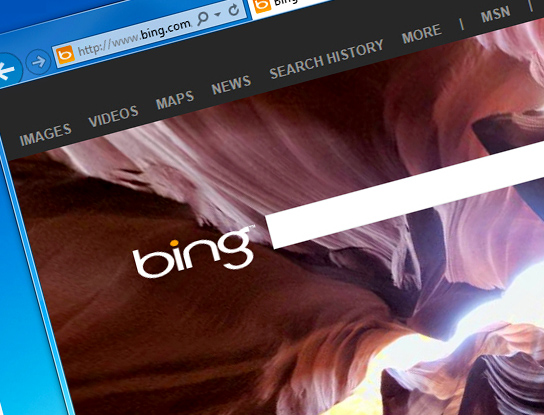 Fourth in a series. Before I switched to using Bing full time my view of Microsoft’s search service was that it was a slightly less reliable alternative to Google, but with some smart touches. I’ve been using it for over a month now and -- spoiler alert -- I actually really like it. Although it’s far from perfect.
Fourth in a series. Before I switched to using Bing full time my view of Microsoft’s search service was that it was a slightly less reliable alternative to Google, but with some smart touches. I’ve been using it for over a month now and -- spoiler alert -- I actually really like it. Although it’s far from perfect.As a Brit I do have a gripe with Bing though, and that’s it presents me with two choices. I can set my country to UK and get results that relate more to my life, or I can set it to the United States and get an all-round better search experience. Seriously, what’s THAT all about, Bing?
To give you some examples -- the American version of Bing has a rewards program. Join up, perform some searches and you can win an Xbox 360 prize pack. UK users have no such incentive. US searchers can connect Facebook to "tap into the wisdom of friends and experts across major social networks like Facebook, Twitter, foursquare, Quora, Klout, Google+ and more". UK users? Nope.
The Popular Now bar at the bottom of the screen on the US version has a variety of stories with images. The UK version -- three or four plain text links. Although we do also get a link relating to the image of the day, and a link about something to do with Britain. So yesterday, on St George’s Day (the Patron Saint of England) there was a link about him. While Google UK had a St George’s Day doodle, Bing’s image was a cool interactive shot of Antelope Canyon, Arizona.
There are other benefits to using the US version of the site too -- the US results page is full of images, useful information and links on the right. The UK version just shows text ads and related searches. So for most of my time on Bing I’ve had my country set to the United States. Although, here’s an interesting thing -- the number of results you get varies wildly depending on which country you’re set to. Run a search for "Google" for example, and Bing US claims around 75,800,000 results. Bing UK 2,110,000,000, or 1,650,000,000 if you choose English Only as the language. Very strange. I didn’t check all the results to find the reason for the difference.
When I perform a search on Google it’s usually through my browser’s search box. I only go to Google itself when there’s a doodle worth seeing (like the cool St George’s Day one). I’ve been using Bing in the same way, but I’ve been going to the home page a lot more -- partly to see the photo of the day (I’m a sucker for a great image, some of which can be downloaded and used as wallpaper) and partly to see what’s popular now. It also gives me quick access to previous searches I've performed (you can turn this off if you don't want your searches logged).
For the most part, in my day to day use, I no longer even think about the fact I’m searching with Bing, not Google. The results pages look similar, and the results are as you’d expect them to be. Occasionally Bing’s top result will be a slightly odd choice (it’s almost as if the site does this to check if you’re paying attention), but all the results you’re likely to need will appear on the front page, so the "correct" top choice (which Google pretty much always nails) is never far away.
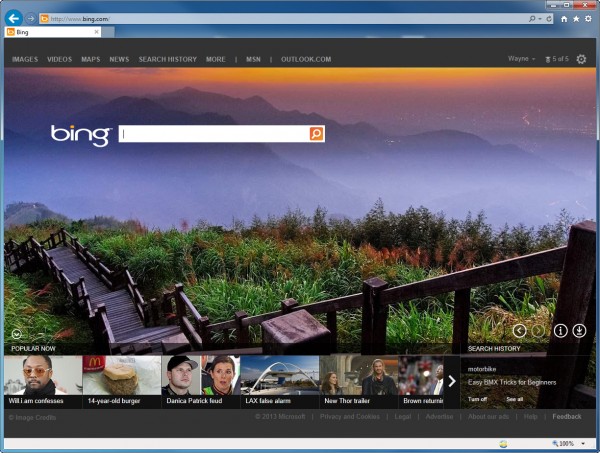 In comparing Bing’s results with Google I’ve found the two sites often deliver the same results, just in a slightly different order. Bing has some great touches I really like. Search for an artist, like "will.i.am" for example, and Bing will provide quick links to his Twitter account and Facebook page and Klout score. You can also listen to his songs via the MySpace player.
In comparing Bing’s results with Google I’ve found the two sites often deliver the same results, just in a slightly different order. Bing has some great touches I really like. Search for an artist, like "will.i.am" for example, and Bing will provide quick links to his Twitter account and Facebook page and Klout score. You can also listen to his songs via the MySpace player.A feature I use all the time on Google is the ability to sort results by time -- any time, past hour, past 24 hours, past week, past month, past year or custom range. Bing added a similar feature last month that lets you order results by past 24 hours, past week or past month. Needless to say this is only available on the US site (the UK site lets you sort the results by language or region).
Beyond Search
As for Bing’s other sections -- Images is, for the most part, very good and offers a selection of choices to filter your search as well as a strip showing related topics. However, if you search for something less well known, such as Zombies Run Google’s results are far more accurate, and show a much deeper understanding of what you are likely to be searching for. Some of the connections Google makes are scarily well chosen. Some of the images Bing presents you with seem almost selected at random. Although, that said, sometimes Bing will come up with excellent images that Google doesn’t find. And if you’re a Pinterest user, Bing lets you pin images you find directly from the photo detail’s page.
Video search is good, and you can sort results by length, resolution and source. Bing Maps is decent, but can’t quite compete with Google Maps. Its Streetside feature -- while good -- only covers a fraction of the places Street View does. Bing News (US) is on a par with Google News (naturally the UK version of Bing News is not as good) and other Bing services, like Shopping and Translator will suit most people’s needs perfectly. As you’d expect, the US site offers lots more additional elements -- like Weather, Events, and Friends’ Photos.
Summing Up
So what’s my overall view of Bing? If you live in the US, it’s a very, very good search engine and you could easily use it as your primary choice for most things. If you live outside of the US, as I do, it’s sadly not as good and means compromising on your location.
Is it better than Google? No. Is it as good as Google? No -- at least not when it comes to results. It does, however, do a lot of things as well, and it does do some things better. The gap between Bing and Google has definitely closed since I last used it, and because Microsoft isn’t trying to force users to a specific social portal (as Google is with Google+) the integration with services that most people use -- such as Twitter, and Facebook, gives Bing an edge I like.
Would I recommend you switch to Bing? It depends on where you live and what you want from a search engine really. If it’s just straightforward, bang on the money results, stick with Google. If you don’t mind occasionally having to hunt a little harder, you use Windows 8 (optional) and appreciate deep integration with all the popular social networks, Bing could well be for you.
-

At last! BBC iPlayer Radio app finally available on Android
Publié: avril 24, 2013, 12:38pm CEST par Wayne Williams
 The BBC tends to favor iOS when it comes to mobile apps. The broadcaster isn’t ignoring Android, it just takes a while to roll out apps for Google’s mobile operating system, and often those apps, when they do arrive, aren’t as slick or don’t have all the features found in the iOS versions.
The BBC tends to favor iOS when it comes to mobile apps. The broadcaster isn’t ignoring Android, it just takes a while to roll out apps for Google’s mobile operating system, and often those apps, when they do arrive, aren’t as slick or don’t have all the features found in the iOS versions.Case in point -- the Beeb debuted the iPlayer Radio app for iOS seven months ago, but it’s taken until now for the Android version to appear on Google Play (it will also be available on Amazon’s app store "very soon").
If you’re not familiar with the app, it lets UK users tune into BBC radio stations live and catch up on radio broadcasts from the past seven days. It works over both Wi-Fi and mobile networks.
So finally, Android owners get to enjoy iPlayer Radio. As long as they don’t have a Samsung Galaxy S III that is, because according to the BBC:
Some Samsung Galaxy S III users may find that audio playback does not work for them for live or on-demand programmes. This is due to a problem with a specific recent firmware version for this device. Devices purchased independently of your network operator should not be impacted. A firmware fix has been deployed by Samsung but may take some time to be rolled out across all networks. Podcast and video playback should not be affected.
Oh, and of course because the BBC only had an additional seven months to work on the Android app, on-demand and catch-up from local and regional stations is "not yet available".
The Android app does offer some improvements over the iOS version however. James Simcock, executive producer for mobile in BBC Radio, explains:
On iOS some content is tucked beneath the ‘currently-playing content’ area on the screen, revealed by swiping upwards to show a ‘carousel’. However, on Android simply swiping horizontally will take you through all the content from the currently selected station.
Other differences between the Android and iOS versions of the app include the use of the notifications panel which appears at the top of the screen when you are elsewhere on your phone, making it easy to get back to the app.
There is also an alarm clock which works regardless of whether the app is active. Sharing programmes and tracks is also more ‘open’, using the extensive sharing functions of the Android platform to make programme URLs or artist and track names available to any application you have installed which can make use of such links.
Having tried it out myself, I can confirm the app is really good, very slick with a stylish radio tuner dial, and I’ve found the quality of the sound to be excellent so far. If you live in the UK, have an Android phone, and love music, you should download the app now.
-

Surface Pro coming to the 'rest of the world' from next month
Publié: avril 23, 2013, 6:59pm CEST par Wayne Williams
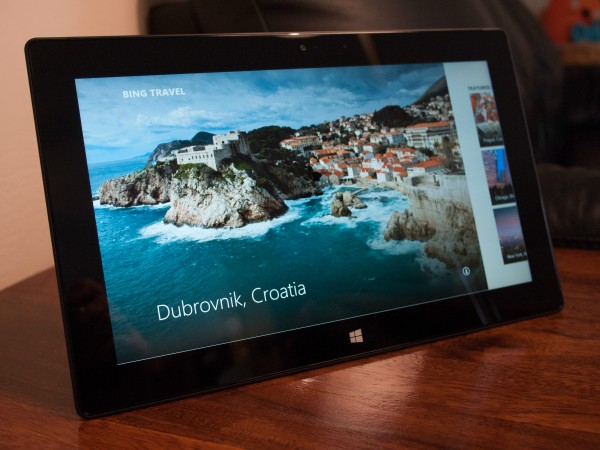
If you live outside of the US and Canada, you might have been wondering when -- or indeed if -- Microsoft's flagship Surface Pro tablet was going to appear in your part of the world.
It’s been all quiet on the Surface front for a while. Microsoft announced back in February that it would be broadening the availability of the RT version of its tablet, introducing it into 13 more European countries, but since then we haven’t had any other real news. That’s all about to change though, as Microsoft has finally delivered an update regarding worldwide availability for its Windows 8 Pro powered device.
According to the technology giant, Surface Pro will be available from May in the following territories: Australia, Austria, Belgium, Denmark, Finland, France, Germany, Hong Kong, Ireland, Italy, Luxembourg, New Zealand, the Netherlands, Norway, Portugal, Spain, Sweden, Switzerland, and the United Kingdom.
Korea, Malaysia, Russia, Singapore, and Thailand will get the tablet a month later. It’s already available to buy in the US, Canada, and China.
There’s no word yet on little things like retail availability (if it will just be available online or in actual shops) or pricing for that matter, but Microsoft says it will reveal all in due course closer to the actual launches. Which suggests it’s still ironing out the details. Don't be too surprised if you can only buy it online in your part of the world though, as RT is only available from brick-and-mortar stores in very few countries.
The RT version of the tablet is also getting expanded distribution and will launch in Malaysia on April 25th, in Mexico by the end of May, and in Korea and Thailand at some point in June.
Announcing the news, Brian Hall, General Manager Microsoft Surface says:
The enthusiasm for Surface has been fantastic, and we love hearing the stories of people who are making it the one device they use to work and play. This is what Surface was designed to do -- simplify your life while letting you do more! In fact, one of our biggest challenges has been keeping our 128GB Surface Pro in stock. We’ve worked hard to increase availability, and most retail partners in the US and Canada as well as the Microsoft Store now have the 128 GB product consistently in stock.
To those of you who have pressed for information -- please understand that before making these announcements we make sure that we have the volume of devices in place and alignment with our retail partners to do each launch well. We value every Surface customer. We’re passionate about the products we’ve built, and we appreciate your passion for getting Surface in your market.
So what do you think of the news? If you live outside of the US and Canada (and China for that matter) will you be snapping up a Surface Pro when it becomes available?
-

Microsoft is concerned about your privacy -- and wants you to be too
Publié: avril 22, 2013, 1:00pm CEST par Wayne Williams
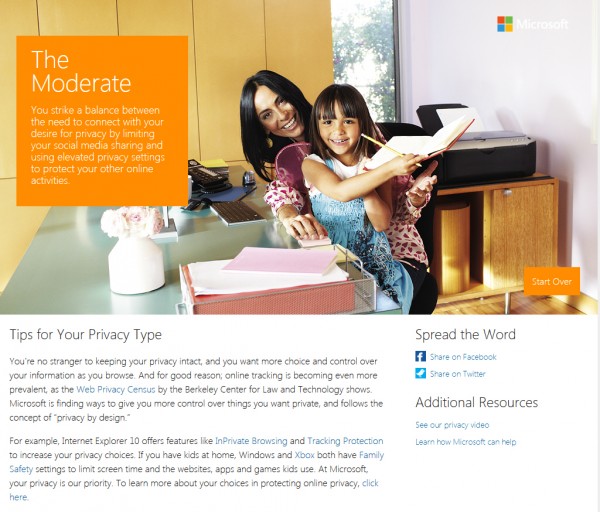
Your privacy is Microsoft’s priority. At least that’s what the software giant is saying. According to Ryan Gavin, General Manager, Windows, the company takes its responsibilities for protecting your privacy very seriously.
To prove this, Microsoft is launching a new consumer awareness campaign focused on online privacy. There’s a special information and tools page at www.Microsoft.com/YourPrivacy (which is so private it doesn’t currently exist), and an ad campaign to "kick start awareness and conversation".
You can also check how good you are at protecting your privacy by taking an online quiz at Your Privacy Type. This asks you questions such as where you access the internet from, which social networks you use and how regularly, how often you check them, who you’re connected to, the sort of information you post, and so on. At the end you’ll be shown your privacy type (I’m "Moderate" apparently) and present tips for improving things.
As Ryan Gavin says:
Very few of us believe that sharing some personal data online is a bad thing. It’s part of our everyday routines to fill out profiles, login to sites, and oftentimes provide personal information like our credit card or phone numbers in order to take advantage of all the web has to offer. In fact, the more personal and relevant the web gets, the better it can get.
Yet, at some point, we all draw a line where we are uncomfortable sharing more. And when we think we’re being tracked, particularly by those we may not have a direct relationship with, our tolerance drops. And while tracking isn’t bad per se, we typically reach our information-sharing breaking point with very personal data, like items related to our kids or our health. That said, everyone is unique when it comes to what we feel comfortable sharing with whom.
Providing customers with the tools and technology that allow you to have more choice and control is something Microsoft has been doing for quite some time, and today’s products like Internet Explorer, Windows, Xbox, and Outlook.com make it easier to manage and control your privacy.
So what do you think of Microsoft’s new initiative?
-

Google Apps users can now get interactive in-app training
Publié: avril 22, 2013, 10:43am CEST par Wayne Williams
 Over five million businesses currently use Google Apps -- a number that is growing all the time -- and while getting to grips with the cloud-based productivity suite is fairly easy, there will always be some staff members who struggle.
Over five million businesses currently use Google Apps -- a number that is growing all the time -- and while getting to grips with the cloud-based productivity suite is fairly easy, there will always be some staff members who struggle.Toronto-based Synergyse, a startup comprised of former Google employees, hopes to make it easy for everyone to get the most out of Google’s suite by providing training directly inside each application.
The new, interactive, measurable and scalable training system is aimed at consumers, businesses and schools looking to get more out of Google Apps. Powered by Google’s cloud platform it currently covers Gmail, Calendar and Drive.
Co-founder Varun Malhotra says: "Google Apps is a robust solution, but a majority of people are not aware of all the features it has. We focused on making training that was easy to use and in-application in order to help the world learn Google Apps".
The training is priced at $10 a year for individuals or per employee (enterprises with over 5,000 employees can contact Synergyse for a quote).
Synergyse is currently offering businesses and educational institutions a chance to win a lifetime license. All you have to do is visit www.synergyse.com and say how Google Apps has helped your school or business.
Photo Credit: auremar
-

Do consumers really want touchscreen PCs? (Because I don't)
Publié: avril 19, 2013, 12:35pm CEST par Wayne Williams
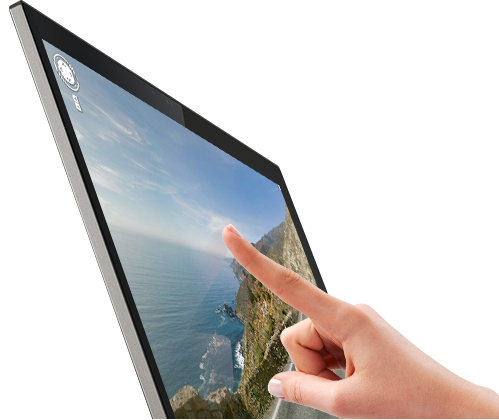 I own an iPad, which I love dearly. I use it for lots of things -- games, email, browsing the web, social networking, writing, viewing photos and video, and remote accessing my PC. The iPad, like all tablets, is a true jack of all trades and a master of some too.
I own an iPad, which I love dearly. I use it for lots of things -- games, email, browsing the web, social networking, writing, viewing photos and video, and remote accessing my PC. The iPad, like all tablets, is a true jack of all trades and a master of some too.But, try as I might, I can’t use it for "real" tasks. While it’s fine for writing small-ish articles on, I could never write a novel on it -- and I’ve tried. For some reason, I just can’t connect with typing on a touchscreen in the same way I do when typing on a proper full-size keyboard. And I could never imagine attempting detailed Photoshop work on a touchscreen either (well, not without a fine stylus at least).
Maybe it’s just because I’ve been using a keyboard and mouse combo for so long that the old control method has become part of who I am when working. I sit down in front of my PC and the mouse and keyboard are there, in my hands without my ever really having to think about what I’m doing.
Touch is more deliberate. Of course I can zip around the iPad, switching apps, firing off emails and zooming in and out without thinking about it. It’s intuitive, but it’s not as fast or as comfortable. And when you put your fingers on the screen, you’re obscuring the view in a way a diminutive mouse cursor doesn’t.
When I’m working I’m at least twice as quick on my PC as I am on my iPad, and I’m usually doing lots more tasks at the same time too.
My point is while I love touch for lots of things, I can’t imagine it ever being the primary method of interacting with all the tech in my life and I really don't see the purpose of touchscreen PCs.
Is It Just Me?
The problem I have is I just don't think there's a need for touchscreen on PCs. It adds a third control method that's not required. And an awkward third control method at that. I know touch is useful for swiping through open apps in Windows 8, and performing other tasks in the OS (and admittedly it can be a little easier than using a trackpad at times), but I want to look at a screen directly ahead of me and interact with what it's showing me without stretching my arms out to it.
I asked around in our newsroom and my colleague Mihaita Bamburic agrees (so it’s not just me!), saying: "I share the same view. Touch is confusing because you have to reach out and then retract your arms in order to fully use it. I think we find it most convenient when the movement of our arms is done on the same level most of the time. Think about it, we move our left or right arm to the side to reach for the mouse and one stays on the keyboard at all times. It's natural to do so, it's habit. Now, with touchscreen PCs, we have to raise the left or right arm to do stuff, which I find tiresome in the long run".
Dire PC sales suggest -- to my mind at least -- that people don’t want to buy new computers with touchscreens and the touch-friendly Windows 8, because, well, they don’t need touchscreens. Touch is essential on tablets and mobile phones, but on PCs, where the issue of gorilla arm remains a problem, it’s not necessary, and it adds a lot of extra cost for no real gain.
As Isabelle Durand, Gartner principal research analyst, says: "The majority of consumers remain unwilling to pay the price premium for touchscreen capabilities on PCs at this stage".
Frankenstein Hybrids
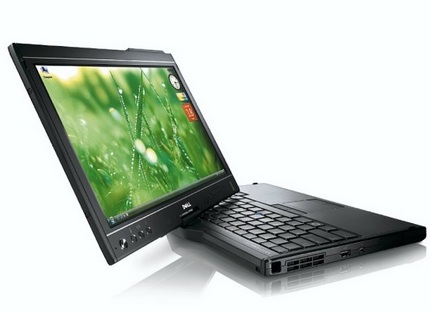 Microsoft bet the farm on touch. It came up with an OS that works brilliantly on touch devices and not as well on bog-standard PCs (it’s not bad on them -- far from it -- but it’s not as good).
Microsoft bet the farm on touch. It came up with an OS that works brilliantly on touch devices and not as well on bog-standard PCs (it’s not bad on them -- far from it -- but it’s not as good).There are rumors that Microsoft is considering allowing users to skip the Start screen and restore the Start menu in the next version of Windows 8, which a lot of mice and keyboard users will appreciate, and which is clearly a good idea, but PC manufacturers aren’t going to stop pushing touchscreens on us. It’s the future, you see. Isabelle Durand again: "Touchscreens and Windows 8 will represent key opportunities for PC manufacturers in the second half of 2013".
According to the latest Touch Panel Market Analysis Report from NPD DisplaySearch, which was released a couple of days ago, manufacturers believe the penetration of touchscreens in notebook PCs is going to grow from under 3 percent last year to over 12 percent this year. Growth triggered, naturally enough, by Windows 8.
To drive this growth many manufactures are coming up with new types of PCs, such as flip and convertible models that can be both PCs and tablets. Great, except isn't that a bit like saying cars are great, and motorbikes are great, so here’s a car made up of two motorbikes stuck together. It can be an uncomfortable car, or it can be two slightly rubbish motorbikes.
Er, can’t I just have a great car AND a great motorbike?
Another analogy: touch is like 3D in the cinema. A few great movies came out which made excellent use of the third dimension -- well, Avatar -- and suddenly every film was 3D, including plenty which just didn’t work with an added dimension. Movie studios like 3D because they can charge more for people to see it, but consumers are less keen (a friend of mine runs a cinema and says 2D versions of movies are much more popular than their 3D counterparts, most of the time). 3D is a fad that’s now slowly dying out and hopefully touch -- on devices where it really doesn’t serve any great purpose -- will be too. But somehow I doubt it.
So my question for you is this: am I just swimming pointlessly against the tide here? Should I be forcing myself to fully embrace touch and accept it's here to stay -- on all devices -- or do you feel the same? Comments below please.
-

Twitter #music arrives first on iOS, then the web
Publié: avril 18, 2013, 3:56pm CEST par Wayne Williams
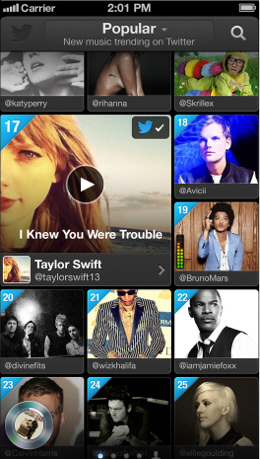 There’s been a lot of talk and rumors flying about Twitter’s new music discovery service, but today the social network revealed the details and launched the first app for it.
There’s been a lot of talk and rumors flying about Twitter’s new music discovery service, but today the social network revealed the details and launched the first app for it.Based partly on the social site’s recent acquisition of the music startup We Are Hunted, Twitter #music is described as a "new service that will change the way people find music".
It uses activity on Twitter (such as tweets and general engagement) to identify the most popular tracks and emerging artists and lets you listen to previews from iTunes. If you have a Rdio or Spotify account, you can log in to those and enjoy the full tracks.
Twitter says it plans to add additional music sources in due course.
The Twitter #music app, which is available for iOS now, offers four main tabs -- Popular (new music trending on Twitter), Emerging (hidden talent found in tweets), Suggested (artists you might like), and #NowPlaying (music that’s been tweeted by artists and people you follow). You can join in on the recommendations by using the #nowplaying" hashtag to tell people what you’re listening to.
When you discover new music you want to share with others, you just tap the spinning disc in the lower left corner to open the player and access the Compose button.
The service is initially available in the US, UK and Ireland, Canada, Australia, and New Zealand, with more countries being added over time. Although the app is only for iOS right now, Twitter says it will be bringing its service to Android. No word on any plans to introduce it to Windows Phone or BlackBerry, however.
The web application will be open for everyone later today and can be accessed at music.twitter.com.
According to Twitter's official announcement, "Twitter and music go great together. People share and discover new songs and albums every day. Many of the most-followed accounts on Twitter are musicians, and half of all users follow at least one musician. This is why artists turn to Twitter first to connect with their fans -- and why we wanted to find a way to surface songs people are tweeting about. We offered music artists an early look at the service. You can see some of their reactions below. We hope you like it, too".
-

Give your Android smartphone a new lease of life with these free apps
Publié: avril 18, 2013, 2:32pm CEST par Wayne Williams
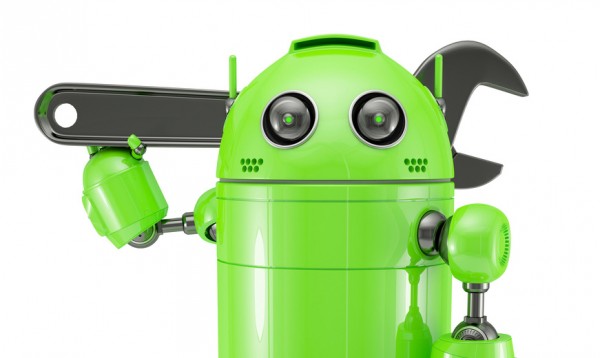
If you don’t look after your computer, it will start to slow down and misbehave. Smartphones too can get clogged up and begin to lag as the amount of storage space and available memory starts to diminish with use.
There are lots of good, free apps available that you can use to make sure your Android (or iOS) device is running at peak performance. Here are some of the more recent.
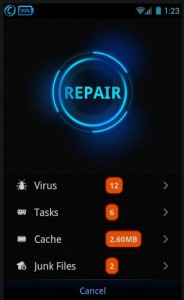 IObit, which is best known for its excellent Advanced SystemCare suite for Windows, has a useful all-in-one Android security and performance optimization app called Advanced Mobile Care.
IObit, which is best known for its excellent Advanced SystemCare suite for Windows, has a useful all-in-one Android security and performance optimization app called Advanced Mobile Care.This performs real-time virus scans and offers a range of handy tools including Anti-theft, Battery Saver, Game Speeder, App Manager, Task Killer, Privacy Locker, Privacy Advisor and Cloud Backup. It works with most devices running Android 2.2 and up.
I generally have to charge my smartphone pretty much every day, which can get annoying. Battery Doctor, available for both Android 2.2+ and iOS 4.3 and later, can help prolong battery life. There’s a one-tap power saving option which will automatically optimize battery usage, and the app can tell you exactly how many more minutes of battery life you have left. You can also use it to turn off power draining features to give you an extra boost.
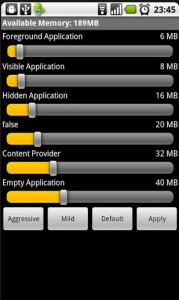 Iolo, the developer responsible for System Mechanic, has an Android app called Auto Memory Manager. As you can guess from the name, this lets you customize the out-of-memory manager settings on Android phones and tablets so you don’t have to do it yourself with task killers. The new release shows how much memory has been freed, and how many times it has killed off troublesome apps. It should work on any device running Android 1.6 onwards.
Iolo, the developer responsible for System Mechanic, has an Android app called Auto Memory Manager. As you can guess from the name, this lets you customize the out-of-memory manager settings on Android phones and tablets so you don’t have to do it yourself with task killers. The new release shows how much memory has been freed, and how many times it has killed off troublesome apps. It should work on any device running Android 1.6 onwards.Clean Master, which I covered previously, does a good job of freeing up space and resources on your Android device. It can clean the cache, remove unused files, clear the search history, uninstall unused apps and free up RAM by killing running tasks. It requires Android 2.1 and up.
Piriform also has an Android version of CCleaner in development which should be available soon.
Those of course are just some of the many system cleaning apps available for Android. Do you have any favorites that you use? Share your recommendations in the comments below.
Photo Credit: Kirill__M/Shutterstock
-

Amazon expands its Android Appstore to nearly 200 countries
Publié: avril 17, 2013, 11:53am CEST par Wayne Williams
 Amazon is a truly global company but until now its Android Appstore was only available in seven countries -- the US, UK, France, Germany, Italy, Spain and Japan.
Amazon is a truly global company but until now its Android Appstore was only available in seven countries -- the US, UK, France, Germany, Italy, Spain and Japan.That’s about to change though as Amazon has today announced plans to introduce its Appstore to close to 200 countries, inviting developers to submit their apps with the promise that they’ll be able to reach millions more active Amazon customers by doing so.
The additional countries include Australia, Brazil, Canada, Mexico, India, South Africa, and South Korea, as well as less obvious territories like Papua New Guinea, and Vatican City.
Developers who are interested in making use of this increased international distribution will have their apps made available for download automatically, unless they state otherwise.
"Amazon’s platform is a complete end-to-end solution for developers wanting to build, market and monetize their apps and games on Kindle Fire and Android devices," Mike George, Vice President of Apps and Games at Amazon said. "Allowing developers to target distribution of their apps and games in even more international countries is yet another important milestone as we strive to serve consumers and developers globally. Many of our existing developers have localized their apps and games for international consumers, and we look forward to working with new developers that have been waiting to bring their apps to more Amazon customers across the globe".
The roll out of the new store fronts is expected to take several months to complete.
Photo Credit: karen roach/Shutterstock
-

Zombies, Run! 2 arrives on iOS and Android
Publié: avril 16, 2013, 3:49pm CEST par Wayne Williams
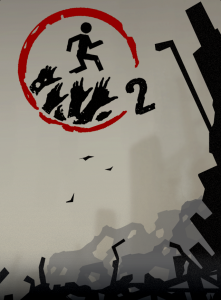 My favorite exercise companion, Zombies, Run!, has just received its promised free upgrade and is available now on both iOS and Android (I’m such a fan I’ve downloaded both).
My favorite exercise companion, Zombies, Run!, has just received its promised free upgrade and is available now on both iOS and Android (I’m such a fan I’ve downloaded both).The immersive app, which basically turns a real-world run into a fear-filled journey through the zombie apocalypse, is ideal for anyone who struggles with motivation and is a bit like a radio play that takes place through your headphones as you run, with the gripping story -- and the occasional zombie chase -- unfolding in between tracks from your playlist.
The upgraded version comes with seven free new missions to get you started (four main ones and three side-quests), with new missions released weekly starting from 29 April. The new missions, of which there are over 60, pick up from where the original Zombies, Run! missions left off, but I won’t say more than that because I don’t want to spoil the experience for anyone starting from scratch. There will be three missions released every week -- two main ones advancing the story, and one side mission.
You can purchase the missions separately or buy a season pass. You have a choice of purchase options. If you're in the US, a Season Pass (all 40 story missions) will cost you $1.99, a Season Pass Plus (with the 20 sidequests included) is $4.99 and if you just want the sidequests themselves, that’ll set you back $2.99. If you're in the UK, a Season Pass is £1.49 on iOS and £1.59 on Android, a Season Pass Plus is £2.99 on iOS but £3.99 on Android, and the sidequests are £1.99 on iOS and £2.39 on Android.
The difference in price is because iTunes and Google handle VAT in slightly different ways and the Apple app prices are actually artificially low because they were set back when the pound was much stronger.
The prices are around 50 percent cheaper at the moment to celebrate the launch of the app, so if you’re thinking of buying a pass now is the time to do it.
In the app itself you can flick between Season 1 (23 main missions) and 2, and also access any race missions. There’s no Radio Mode option at the moment, but that’s coming back soon.
In addition to the new missions, the upgraded app comes with a Base Builder that lets you create your own vision of Able Township (where the game is based), by adding new buildings, upgrading or demolishing existing ones and so on. The more you run, the more supplies you collect (on average you’ll pick up 30 supplies an hour) and the more you can build. You start with the farmhouse, defense tower and an armory, and can add housing, hospitals and recreation areas. Bonus items will be unlocked as you progress in the game.
Zombies, Run! 2 is a free upgrade to the original. If you don’t already have the app installed, you can buy it on the App Store or Google Play for $3.99/£2.79 which, like the season passes, is currently 50 percent cheaper than it would be normally.
-

BlackBerry Q10 now available to pre-order on Vodafone
Publié: avril 16, 2013, 1:21pm CEST par Wayne Williams
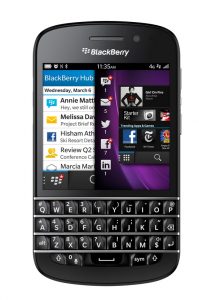 UK dwellers keen to get their hands on BlackBerry’s new Q10 smartphone will have to wait until the end of the month when it goes on sale officially, but they can start pre-ordering it from today.
UK dwellers keen to get their hands on BlackBerry’s new Q10 smartphone will have to wait until the end of the month when it goes on sale officially, but they can start pre-ordering it from today.Vodafone, which describes the new handset as a "classic in the making" has opened its pre-order page so you can choose a tariff and place your order.
The handset is available in any color -- so long as it’s black or white -- and as always there’s a choice of plans to pick from. If you don’t want to shell out anything upfront, you can sign up for a 24-month Vodafone Red contract which will cost you £37 a month and give you unlimited texts and calls, as well as 1GB of data.
While the phone’s stable mate, the Z10, comes with a 4.2-inch touchscreen display, the BlackBerry Q10 has a 3.1-inch touchscreen and the traditional BlackBerry physical keyboard.
Specs-wise, the Q10 rocks a 1.5GHz dual-core processor with 2GB of RAM, and a rear-facing 8-Megapixel camera.
-

YouTube adds a VHS simulator to select videos
Publié: avril 15, 2013, 10:51am CEST par Wayne Williams

The VHS is about to celebrate its 57th birthday, and in honor of that milestone, Google has added a new tape mode to some of the videos on YouTube.
Although it’s not widely available at the moment, a few clips have a tape icon under them which, when clicked, makes the videos look as if they are playing on a VHS recorder.
In addition to the distortion, screen noise, and occasional screen roll, YouTube has faithfully captured the wobbling pause effect beautifully.
In a Google+ update discussing the new addition, YouTube says: "Not too long ago, the video tape was the media of choice for living rooms around the world. In celebration of the 57th birthday of the first commercial video cassette recorder, check out a fun VHS mode for the YouTube player to relive the magic feel of vintage video tapes".
To see it in action, try this video.
-

So is Windows 8 Microsoft's ‘biggest failure ever’?
Publié: avril 15, 2013, 10:04am CEST par Wayne Williams
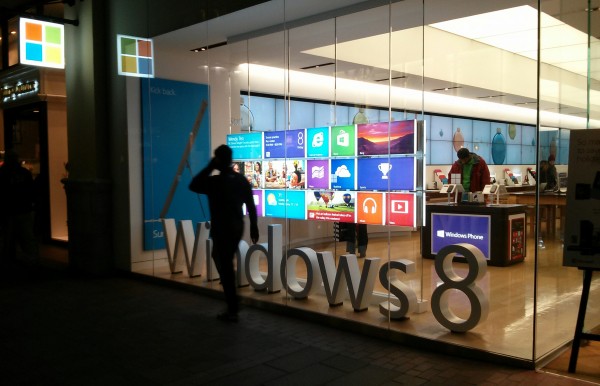 There are lots of questions concerning Windows 8 -- does Microsoft need to make changes to it? Is the OS responsible for the death of the PC? How many copies has it actually sold? And last Friday financial-services company The Motley Fool asked the question in my headline, which I know a lot of people have been pondering too -- is Windows 8 Microsoft's biggest failure ever?
There are lots of questions concerning Windows 8 -- does Microsoft need to make changes to it? Is the OS responsible for the death of the PC? How many copies has it actually sold? And last Friday financial-services company The Motley Fool asked the question in my headline, which I know a lot of people have been pondering too -- is Windows 8 Microsoft's biggest failure ever?Like all tech firms, the software giant has had its fair share of hits and misses. Microsoft isn’t the greatest risk taker out there, but it does make gambles occasionally that don’t pay off and it has experienced some major flops over the years. People talk about Vista, but there have been plenty of other past disasters, including Windows Me, Microsoft Bob, Zune, Kin… But is Windows 8 its worst catastrophe to date?
As always, it’s a matter of opinion. There’s no question that Windows 8 hasn’t been a success on any real level. Sure Microsoft made money from it, selling those 60 million licenses early on, but Windows 8 is an incredibly important operating system for Microsoft. It’s what ties the company’s entire future together -- computers, tablets, smartphones -- and if it doesn’t work, the whole company strategy will inevitably start to crumble.
In this video, Andrew Tonner, a tech/telecom analyst at The Motley Fool discusses whether Microsoft is a good tech investment (spoiler alert -- he recommends steering well clear), and he certainly doesn’t pull any punches in his analysis. He discusses the shrinking PC market, touching on the IDC and Gartner reports, and admits that a weak economy and factors like slowing growth in emerging markets are partially to blame, before laying into Windows 8 for its role in the decline. He states that "people simply don’t seem to like the platform very much", talks about how precarious Microsoft’s position is, and then delivers his killer line:
There’s a reason this company basically has generated zero returns for investors over the last ten years, and that’s because they [Microsoft] simply don’t get where technology is going any more.
Ouch.
Personally I think that’s more than a tad harsh. Windows 8 was inspired because Microsoft saw where technology was going and wanted to get there fast. It just may not have chosen the best route in its scramble to embrace tablets and touch.
BetaNews readers love a great debate, especially on the topic of Windows 8, and Andrew Tonner has raised two interesting topics I’d love to get your views on. Do you think Windows 8 is Microsoft’s biggest failure, or is it just a slow burner? And do you agree with him that the firm doesn’t get where technology is going any more, or is he just plain wrong? As always, leave your comments below.
-

ServicePower lets firms manage their workforces in the cloud [Q&A]
Publié: avril 12, 2013, 1:02pm CEST par Wayne Williams
 ServicePower -- a mobile workforce management software provider -- is seeing more and more companies turning to a workforce model that relies on a mix of full-time employees, third-party contractors, and independent technicians being brought together and managed seamlessly in one place using the power of the cloud.
ServicePower -- a mobile workforce management software provider -- is seeing more and more companies turning to a workforce model that relies on a mix of full-time employees, third-party contractors, and independent technicians being brought together and managed seamlessly in one place using the power of the cloud.I chatted with Mark Duffin, CEO and president of ServicePower, about the changes he’s seen recently, the data his firm collects, and why cloud deployment has become so important to his company and its clients.
BN: For the benefit of any readers not familiar with ServicePower, can you tell me about the platform and what it does?
MD: ServicePower Technologies provides a mobile field management software platform that enables clients to mix labor resources -- utilizing full-time employees, contractors, and third-party resources while easily controlling, monitoring and analyzing scheduling and operations.
Our clients use the platform to manage customers, inventory and finances. It enables them to schedule, optimize and dispatch jobs to field resources, while collecting real time job status information, and asset location data. Our platform manages time cards for employees, payments to contractors, and also provides the end-to-end business intelligence to manage the whole process with an eye towards cost control, increased profit margin, increased productivity and utilization, cycle time control and enhanced customer satisfaction.
BN: If you’re dealing with scheduling and delivery, is this a tool that could be used by Amazon, for example?
MD: Any organization that needs field resources to perform service, installation, delivery, inspections, etc., can use our field management platform to ensure that they have resources with the correct skills, in the right geography to execute against its customer commitments.
Our platform enables retailers and e-tailers, for instance, to focus on selling product, rather than manually determining the best route for a series of deliveries. Our software platform will determine the best field resource from amongst employee, third party contractor and on demand technician labor pools. It will communicate the schedule of jobs as well as the real time status of the event, via our mobile application, which can be used from any handheld device capable of browsing the web. It also will pay contractors for work performed, and generate business intelligence that can then feed the field management process.
So, companies like Walmart, or Amazon, for instance, can use the ServicePower platform as an extension of product sales, enabling them to drive incremental services sales, as well as build customer ‘stickiness’ since they can offer the product, as well as delivery, initial installation and service in the future.
BN: ServicePower started life as a scheduling tool, but now it also manages operations, inventory, digital assets and tracks data in all of them. Was it always the plan to support so many services and to enter the world of big data?
MD: ServicePower’s vision evolved over the last five years to a complete end-to-end solution, rather than independent products that address organizations with a single labor resource pool.
We’ve learned that in order for our clients to become best-in-class field service organizations, they must be able to seamlessly tap into multiple labor resource pools, enabling them to achieve metrics around cost and margin control, demand seasonality, productivity and utilization, cycle time, and customer satisfaction.
Our goal has always been to provide the best field management tools. The completed platform now enables clients to get all functionality they need from a single source vendor.
All field service organizations are operating in a big data environment, due to the increase in the collection of data, through sources like mobile devices, software logs, and wireless networks.
Our field management platform gives them the tools they need to use that data to plan, execute and analyze.
BN: What type of data do you collect and how do you use it?
MD: Our platform collects:
- Field resource skills
- Field resource geography, including a the level of knowledge of an area for employed or dedicated field resources
- Field resource efficiency (how well they can execute what they’re scheduled to do related to job length)
- Travel times from location to location
- Mileage costs, fuel utilization
- Driving behavior
- Cost of overtime
- Cost of a particularly routed set of jobs, versus the cost of a differently routed job set
- Total job cost
- Shift adherence
- SLA adherence
- Schedule adherence
- Centralized dispatch management throughput improvements
- Decreased rework/truck rolls
- Productivity
- Utilization
- Capacity
- Labor rates
- Parts usage
- Quality scores
- Part failure rates
- Cycle time
- Job status
- GPS location
The data is used to drive not only the scheduling behavior of the platform, in terms of who is scheduled for which jobs, but also uses the data to drive planning and forecasting, and continuous execution improvements.
BN: You’ve recorded job complete times across multiple industries? Any trends?
MD: The trend is that job times differ greatly around different industries but travel times by and large do not. Nor should job times differ by training for an employee. Interestingly, we have found that in urban areas, travel times often reduce when utilizing our solution. The real importance with job times isn’t that each industry is different but that we’ve seen common best practices which improve job times and ultimately customer satisfaction. Those standards are to accurately status jobs, report accurate travel times, compare performance of the workforce based on seniority and training, and optimize frequently by more than just travel time. By doing so, the organization can increase capacity, plan for emergency work and meet customer SLA’s (service-level agreements).
BN: What makes ServicePower worth paying for as an IT solution?
MD: ServicePower embraced cloud technologies long before the rest of the market did. We recognized that cloud based deployment drove aggregation of jobs within the third-party contractor markets, while increasing adoption of technology due to low cost of entry for independent, often cash-strapped contractors.
By offering our entire platform as a cloud solution, we’ve also driven cost out of organizations that would have historically paid for the infrastructure to support on premise deployments. We’re managing the hardware and software, within the cloud, with the appropriate redundancy and failover safeguards, to provide our clients with the best tools, at the lowest costs.
ServicePower provides clients with the ability to forecast, execute and analyze its operation, while mixing field labor resources to achieve its most desirable field service metrics, yielding a best-in-class field service operation.
BN: Why is cloud-based technology so important to ServicePower?
MD: As stated above, cloud technology is very important to today’s field service organization. Cloud deployment, if implemented with rigid redundancy and failover capabilities, enables organizations to utilize cutting edge technology at the lowest cost possible, while still able to realize improvements in productivity and utilization, margin and customer satisfaction.
Cloud deployment drives aggregation and adoption in the contractor markets, while also providing them with cost savings. The addition of our new HTML5 mobile application and S2 Suite business management software, both cloud-based technologies, further enhance our ability to provide our clients with the best possible, least costly mixture of field labor resources to achieve their business metrics.
BN: When choosing a hybrid/HTML5 mobile solution, what factors did you take into account?
MD: ServicePower has been in the mobile application space for many years. With the proliferation of devices and operating systems, it became apparent that our clients, as well as and perhaps most importantly, our third-party contractor networks, required a solution that supports evolving mobile strategies.
So many clients are moving away from outfitting their own technicians with a single device, instead implementing a BYOD (Bring-Your-Own-Device) strategy. That trend, plus the need to secure the same level of real-time job status information from third-party contractors required technology that would work on just about any device a technician may already have in hand.
Working in conjunction with the largest device manufacturers in the world, particularly Apple, ServicePower’s team of developers created a browser product that takes advantage of elements found in native apps, to ensure a consistent, OS centric user experience called ServiceMobility. Apple users interact with what looks and works like an iTunes app. Android users interact with an app that looks and feels like a Google Play app.
The ServiceMobility product suite supports key enterprise requirements such as disconnected data, signature capture and barcode scanning, across the product set, and is structured to support our wide range of client needs.
BN: What is one industry that is not currently using your platform, but could benefit greatly from it?
MD: ServicePower has just scratched the surface of the telecom industry. The supply chain is so extensive, with companies ranging from VARs (value-added resellers) to telecom carriers, yet each link in the chain utilizes field resources to execute.
But, ServicePower is uniquely positioned to provide a multi-labor channel solution that is relevant and necessary for telecom supply chain members to execute, whether they provide equipment installation or repairs, infrastructure or consumer based voice and data services.
Our solution enables the telecom industry to optimize their own employed field resources, but also utilize third-party contractors to address geography, skill, and capacity or catastrophe events.
Photo Credit: everything possible/Shutterstock
-

O2 Refresh uncouples phone and airtime tariffs in the UK for easier upgrades
Publié: avril 12, 2013, 11:39am CEST par Wayne Williams
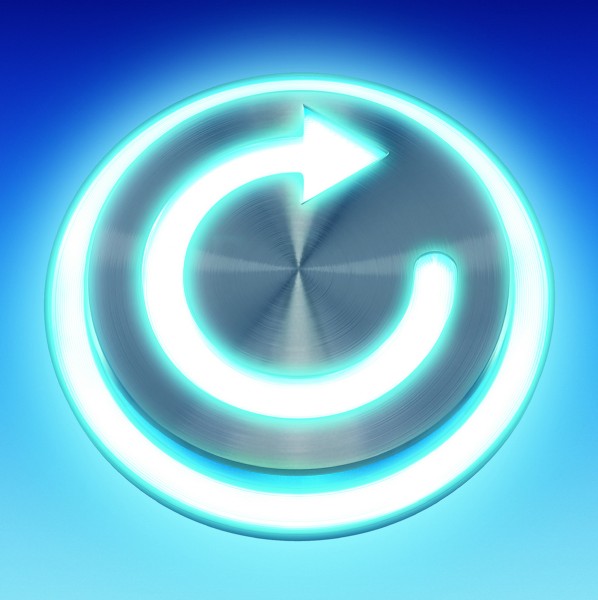 When you get a new mobile phone and set up a new contract, you’re tied into it for a set period of time. If you want to upgrade to a new phone partway through your contract you’ll need to pay off at least some -- if not all -- of the remaining fees, which can prove very costly.
When you get a new mobile phone and set up a new contract, you’re tied into it for a set period of time. If you want to upgrade to a new phone partway through your contract you’ll need to pay off at least some -- if not all -- of the remaining fees, which can prove very costly.O2 has come up with a new mobile phone price plan designed to appeal to people who like to always have the latest smartphone.
Available from O2 stores from Tuesday 16 April, O2 Refresh is actually two separate contracts -- one covering airtime (your talktime, texts, data and so on) and another covering the cost of the phone itself.
Customers firstly choose the airtime plan they want. There are a choice of three price points on offer -- £12 a month (600 minutes, unlimited texts and 750MB of data), £17 a month (unlimited minutes, unlimited texts and 1GB of data) and £22 a month (unlimited minutes, unlimited texts and 2GB of data). Buyers then add on the plan for the phone (the HTC One, for example, costs £49.99 up front and £20 per month for two years). When a new model comes out, they only have to pay off whatever’s remaining on the phone plan. The airtime plan can be ended at the same time with no termination fee.
"Mobile phone technology continues to advance at a rapid pace, yet the way phones are sold has remained largely static," Feilim Mackle, Sales and Service Director at Telefónica UK explains. "Increasingly our customers are telling us that they don’t want to be tied to the same phone for two years and, with 4G coming to O2 this summer, we want to make it easier for our customers to benefit from the latest technology. For the first time in the UK, O2 Refresh will make it possible to get a new phone part way through a pay monthly contract, at any time -- quickly, easily and cost-effectively".
The list of phones available on the O2 Refresh plan include HTC One, Sony Xperia Z, Blackberry Z10, Samsung Galaxy S3 and Apple iPhone 5. The Blackberry Q10 and Samsung Galaxy S4 will be added when they become available.
-

Switching from Google to Microsoft, part 3 -- A positive Outlook.com
Publié: avril 5, 2013, 1:36pm CEST par Wayne Williams
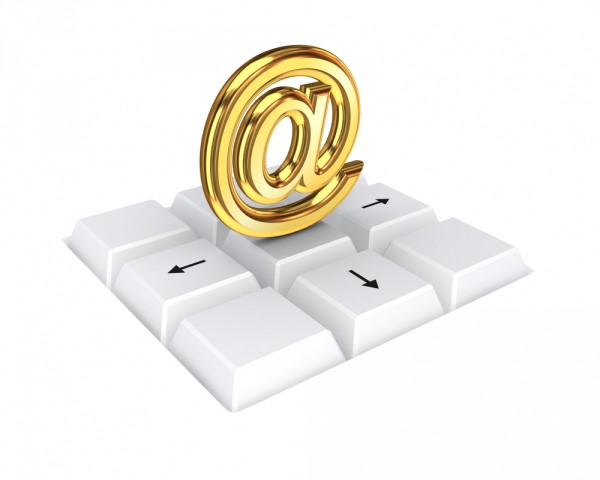
As someone who switched from Hotmail to Gmail in 2004 and then never looked back, moving to Outlook.com has been quite a weird experience (setting it up was fun in its own right). Some people hate Gmail’s interface, but if you’re used to it, using anything else seems odd.
That said, I’ve adapted to Outlook.com pretty quickly. It feels a bit like going back in time, using an interface similar to the ones I used in the past, but it doesn’t feel dated -- quite the opposite actually -- and I’ve grown to really like it in the short period of time I’ve been using it as my email service.
There are some elements I miss about Gmail. Message previews for example. When a message arrives in Gmail, I can instantly tell if it’s worth opening or not because I can see the first lines of text. Some messages just say "OK" for example and I can get everything I need from the preview.
I’m a big Labs user, so I make good use of features like Undo Send which lets me cancel sending when I realize I’ve made a mistake -- failed to attach something or missed off a CC -- but equally there are some elements of Outlook.com I really appreciate.
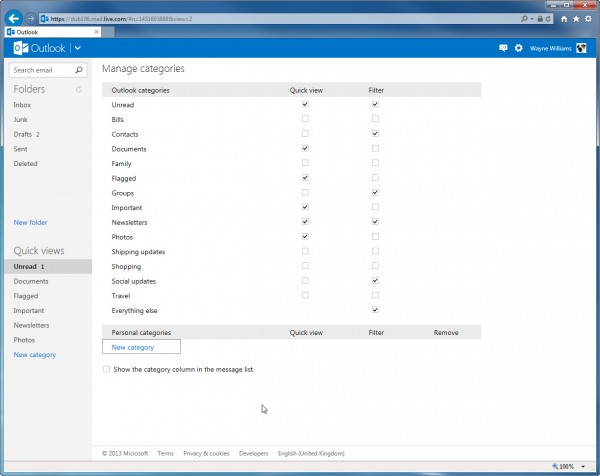 The Quick Views in particular are really handy. I like that I can quickly view emails that have documents or photos attached, that I can see just view unread messages (as I can in Gmail) and that I can trawl through newsletters. Adding additional emails/senders to categories takes seconds via a drop down menu.
The Quick Views in particular are really handy. I like that I can quickly view emails that have documents or photos attached, that I can see just view unread messages (as I can in Gmail) and that I can trawl through newsletters. Adding additional emails/senders to categories takes seconds via a drop down menu.I’ve got used to the message pane in Outlook.com. I couldn’t decide initially if I wanted to turn it on or not, but now it’s active I find it very handy. I can have the pane at the bottom or on the right -- and as I have dual widescreen monitors, it makes sense to use the spare real estate and go for the latter option.
In Gmail I can send exceptionally large files through Google Drive. Outlook.com lets me do the same using SkyDrive.
The lack of IMAP support in Outlook.com is an annoyance, but there are ways around this and I rarely delete emails anyway (which is why my primary Gmail account is 82 percent full). Outlook.com offers unlimited space, which is great.
Spam, Spam, Spam
So far, so good. But now we get to the problem I have with Outlook.com, and it’s a problem I’ve had since I signed up for an account -- spam. I get a lot of junk mail. In Gmail I never see it. It goes straight into my Spam folder and I never have to worry about it. Occasionally, and it’s very, very occasionally, some spam slips into my inbox, but it’s quickly dispatched and I never see it again. Sometimes, even less occasionally, real messages make it through into spam. I often miss these because Gmail is so good at filtering junk I rarely bother to look in my Spam folder.
Despite the fact that Gmail removes any spam before forwarding on clean messages to Microsoft’s webmail service, I continue to get spam in my Outlook.com inbox that’s linked to either my Outlook.com address or the Hotmail account I had previously.
I use the Sweep option to delete and block all future messages from the spam senders, but while this has had a huge impact on the amount of junk mail I receive, it hasn’t stopped it entirely. I know I can switch to the Exclusive junk email filter and optionally block content from unknown senders, but that all seems a bit extreme to me.
On a related note, I went into my Junk folder after having previously just ignored it, as I do with Gmail, and found 20 or so messages -- blatantly not spam -- sitting there. Messages that Gmail knew were clean, but which Outlook.com had tagged as undesirable.
It’s become clear in the couple of weeks that I’ve been using Outlook.com that I can’t trust the service to just handle spam, as I do with Gmail. I have to get much more hands on (managing safe and blocked senders myself, for example). It’s not a problem -- and over time I think the issue will diminish to the point that I no longer even think about it -- but at the moment it’s still slightly annoying to me.
But I like how easy managing messages is in Outlook.com. The bar at the top makes it easy to do everything I need to with an email. I prefer the way Gmail lets me search for messages but that might be partially down to conditioning.
On the mobile side of things, accessing Outlook.com through iOS is fine, the mobile version of the site is decent, and there’s a passable Android app too, so I’m fairly well covered. I have niggles about all of them, but I have niggles about Gmail on mobile too.
The question I’ve asked myself a lot, and which I’ve yet to fully answer, is whether at the end of my trial period if I’m going to stick with Outlook.com or switch back to Gmail. I’ve settled into Outlook.com nicely and I don’t actually miss anything major about Gmail, with the exception of the message previews (I hadn’t realized how much I used to them to visually locate messages I was looking for until the preview lines were no longer available to me). Right now at least, I’m leaning towards making my switch to Outlook.com permanent…
Provided I can just stop that last annoying bit of spam reaching my inbox.
Anyone else here made the switch from Gmail to Outlook.com and what was your reason for doing so?
Photo Credit: 3Dstock/Shutterstock
-

With its new video calling feature can Vonage Mobile really take on Skype? [Q&A]
Publié: avril 5, 2013, 10:18am CEST par Wayne Williams

On Tuesday, Vonage introduced free video calling into its mobile app for iPhone and Android, rounding out a suite which already offers features like free app-to-app calls, texts, photo and location sharing, as well as international calling.
I chatted to Nick Lazzaro, Vonage’s SVP Product Development, Information Technology and Managing Director Mobile Services, about the new addition, the company’s plans for the future, and what he thinks is next for the mobile industry.
BN: Tell me more about the new video capability in Vonage Mobile.
NL: We’ve launched Vonage Mobile with video calling as part of the ongoing expansion of our mobile platform. Vonage Mobile lets users make video calls to other app users with terrific image quality and high-definition voice. Video is available now for Android and iPhone devices and allows users to make free video calls over Wi-Fi and 3G/4G. The Vonage Mobile app is a free download from Google Play and the iTunes app store, and it’s easy to register, invite friends and start making free video calls immediately. To use the feature, users simply tap the "Video" button from within the app to connect their video call to another app user. If the person being called is not available, the caller is able to send a free text message letting them know they were trying to call.
BN: Why add video calling to Vonage Mobile now?
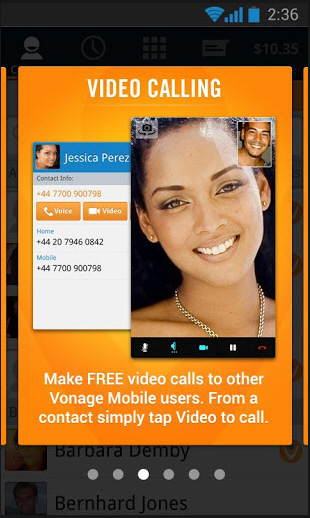 NL: Our goal is to continue to make Vonage Mobile the most comprehensive communication solution for voice, messaging and now video -- and improve upon the user experiences already provided by other apps. Our first order of business was to deliver free app-to-app calling and messaging and, true to Vonage’s heritage, ultra-low international long-distance calling. With this foundation, video was our most logical next goal.
NL: Our goal is to continue to make Vonage Mobile the most comprehensive communication solution for voice, messaging and now video -- and improve upon the user experiences already provided by other apps. Our first order of business was to deliver free app-to-app calling and messaging and, true to Vonage’s heritage, ultra-low international long-distance calling. With this foundation, video was our most logical next goal.BN: What are the features of video calling with Vonage Mobile?
NL: We’ve worked to make Vonage Mobile video calling as seamless and flexible as possible, so while making video calls on 3G/4G or Wi-Fi, users can toggle between front and back cameras, switch between voice and video mid-call, mute the line and use the app with Bluetooth.
BN: Skype has similar offerings. What are the difference between Vonage Mobile and Skype?
There are several significant features that differentiate Vonage Mobile. First, Vonage Mobile allows you to access your existing contacts to build a global personal free calling and texting network. Users can invite multiple contacts via SMS to join their free calling and texting community, and for each friend who downloads and registers for Vonage Mobile, users will earn $1 of credit (up to $10) as part of the app’s Referral Program. The app also mirrors your mobile phone experience -- and uses your existing mobile identity -- to make a phone call or send a text message. Vonage Mobile also offers international long distance calling with per-minute rates that are, on average, 30 percent less than Skype and 70 percent less than major carriers.
BN: Vonage became well known for home phone service via VoIP. What motivated the addition of mobile, and what are the company’s plans for the future?
NL: Our Vonage home service continues to be very popular -- especially with the unlimited international long distance calling offered by our flagship Vonage World plan. But with the explosion of mobile, our customers were asking for greater mobility and we’ve delivered that through Vonage Extensions and Vonage Mobile.
Vonage Extensions lets our subscriber customers extend their home plan for free to a second phone line, including a mobile phone. Our Vonage Extensions app for iPhone and Android enables one-touch international calling anytime, anywhere over 3G/4G or Wi-Fi. Today, 28 percent of our customers have signed up for Vonage Extensions and one out of four Vonage international long-distance calls is originated from a mobile.
Vonage Mobile gives any Android or iOS user the opportunity to tap Vonage’s global network to make ultra-low cost international calls, plus make free app-to-app voice calls, texts and now video calls. Our plan is to continue to deliver new innovations that solve today’s consumer calling problems -- whether those are mobility, convenience, cost, flexibility or network.
BN: This would seem to transform how Vonage defines itself to consumers, right?
NL: We’ve been defined as a telco company or a VoIP provider, but we see ourselves today as a technology company. We apply our innovations in technology and software to solving communications problems for consumers, and that’s where we believe we provide the greatest value for consumers and the business marketplace as the communications world continues to converge and compress across the globe.
BN: With the number of OTT (Over-The-Top) apps on the market, do you believe major carriers are beginning to see a need to integrate more OTT communications apps to stay competitive?
NL: We’ve seen an increasing innovation in communications and it’s creating a compression in the pricing and a migration of communications to the lowest-cost networks. It’s great for consumers and I think carriers are taking notice of this trend. Some are developing their own OTT apps and many may look to partner with OTT providers who can help them more quickly participate in this growing global communications trend.
BN: It seems the mobile industry is constantly evolving and pushing for the next best thing. What do you think is next for mobile? Where do you see the industry headed?
NL: There is a great convergence in communications as more communications networks and devices proliferate in the consumer marketplace. Simplifying this experience for consumers and helping them manage their communications and their growing social graphs is going to drive a certain amount of innovation.
There is also a great compression in international communications pricing for voice, messaging and roaming, which is fostering the migration of communications and data traffic to the lowest cost solutions.
Consumers will play a role by demanding solutions that have superior user experiences and are easy to access and incorporate into their everyday lives.
Companies like Vonage will continue to develop new innovations and solutions that simplify user experiences and facilitate the migration of traffic to cost-savings channels -- for our subscriber customers and any consumer looking for easy, low cost solutions to communications. We believe communication should be like email -- wherever and whenever you want it -- and in a way that is easy, convenient and affordable.
Understanding these key trends and how they play in mobility and the way people interact with mobile technology will continue to drive innovation in the industry.
Photo Credit: Bevan Goldswain/Shutterstock
-

Backupify launches additional cloud-to-cloud backup tools for Google Apps
Publié: avril 4, 2013, 3:05pm CEST par Wayne Williams
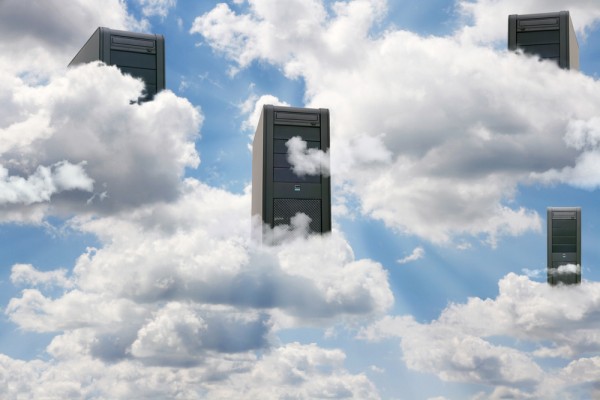
Backupify is introducing an enhanced set of backup and recovery features designed to support its core offering for enterprise-level organizations on Google Apps. The "Spring Release for Google Apps" includes tools built to offer more efficient ways for administrators and end-users to manage their backups within larger organizations.
The update, which builds on the Winter Release launched last December, adds the following advanced data recovery and admin controls:
- Full Domain Export
- Configurable Data Retention
- Batch Import of Users
- Restore and Export Folder Hierarchy
- Google Sites Restore
Backupify has also introduced unlimited storage to both its Professional and Enterprise plans.
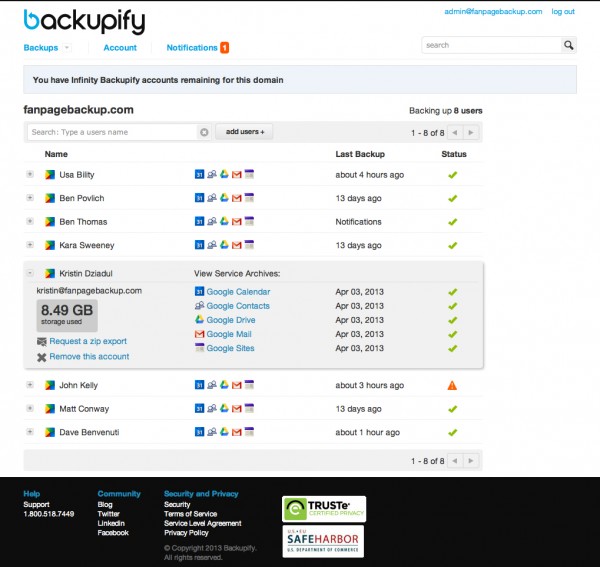
"Our updated Google Apps solution highlights Backupify’s focus and commitment to enterprise organizations in need of a complete backup solution that prevents loss of important business information stored on the cloud," Rob May, CEO of Backupify explains. "Features like configurable data retention, advanced admin access control and domain export capabilities -- functionality that’s critical for large companies -- were all built as a result of listening to our customers’ ongoing needs".
Photo Credit: Andreas Weitzmann/Shutterstock
-

Amazon AutoRip now gives users free MP3 versions of past vinyl purchases
Publié: avril 3, 2013, 4:11pm CEST par Wayne Williams
 Although it sounds like a slightly late April Fool’s joke, Amazon has today announced it will be giving customers who have purchased vinyl records from Amazon dating back to 1998, free copies in MP3 format.
Although it sounds like a slightly late April Fool’s joke, Amazon has today announced it will be giving customers who have purchased vinyl records from Amazon dating back to 1998, free copies in MP3 format.It forms part of the AutoRip service which automatically adds MP3s of past and present CD purchases to the shopper’s Cloud Player libraries.
It’s actually a pretty good idea in my opinion, and Amazon says that "thousands of records, including titles from every major record label, are available for AutoRip", with more titles being added all the time.
What’s particularly great about the service is you don’t have to do anything. If you’ve purchased records which are AutoRip compatible, Amazon will rip them and make them available to you in 256Kbps quality. You’ll get an email alerting you once they've been added to your cloud library.
According to Steve Boom, Vice President of Digital Music for Amazon, "AutoRip has been wildly popular with customers since it launched earlier this year. It’s a fun experience to suddenly find CDs you purchased just today -- or 15 years ago -- added automatically and free of charge to your digital library. We’re thrilled to extend this experience to vinyl records. Many of our music customers are vinyl fans and it’s traditionally been very difficult to make digital versions of vinyl records -- now customers can enjoy the albums they buy wherever they are, not just when they have access to a record player".
So what’s next for the AutoRip service? I think it’s a safe bet we’ll be seeing cassettes added at some point before the year’s out.
Photo Credit: Yuganov Konstantin/Shutterstock
-

Papa Sangre gets a sound engine upgrade, The Nightjar coming to the US soon
Publié: avril 3, 2013, 1:47pm CEST par Wayne Williams

If neither Papa Sangre nor The Nightjar mean anything to you, you’re missing out on some real iOS gaming greatness. Both are audio-only adventures for iOS from British developer Somethin’ Else. You don’t need any major gaming prowess to play them -- just a good pair of headphones and the ability to listen (which a lot of women will say rules out most men then).
The two very immersive games follow a similar style. You use the iPhone, iPod touch or iPad’s screen to walk forward, and swipe to turn left or right, listening for sound clues to ensure you’re headed in the correct direction -- towards something to collect or an exit, or away from some form of nasty scurrying around in the darkness.
Late last week Papa Sangre received a sound engine upgrade to make the 3D sound more effective, and a similarly updated version of The Nightjar will be rolling out shortly. The New Papa Engine, which uses binaural HRTF (Head Related Transfer Function) audio signal processing algorithms to be able to convincingly play mono sounds anywhere in a 3D space, is now available for developers to create their own apps too, so we can expect more similar audio games in the future, no doubt.
The Nightjar is my favorite of the two games and stars the voice of Benedict Cumberbatch (BBC’s Sherlock, Smaug in The Hobbit, and John Harrison in Star Trek Into Darkness). It’s only ever been available in the UK, but Something’ Else will finally be making it available everywhere from the 23 April.
And if you’re a fan of Papa Sangre, you’ll be pleased to hear that Somethin’ Else is going into full production on the follow up -- called Papa Sangre 2 -- next week, with a view to releasing it sometime this summer. There’s no real details about it yet, except that it’ll be shorter than the original, but longer than The Nightjar, and feature a new "Gyro Mode".
-

BBC updates its news app
Publié: avril 3, 2013, 9:45am CEST par Wayne Williams
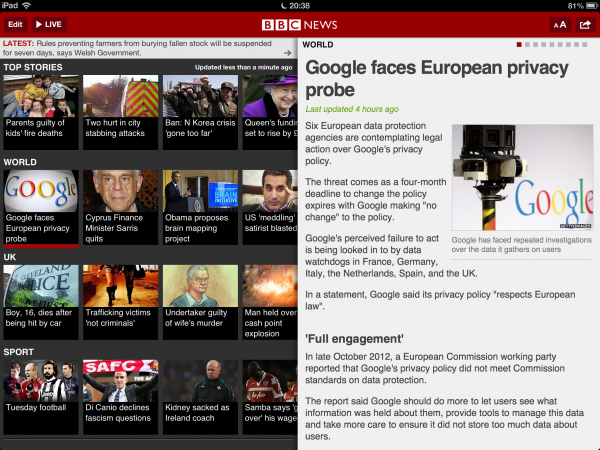
The BBC News app for iOS is pretty good but it’s always been rather buggy. The BBC debuted version 2.0 of the app late last night, and as well as bug fixes and improved response times, there have been a few other welcome changes.
Among the tweaks, the app now lets users copy story links to the clipboard, Twitter and Facebook integration has been improved, so it’s easier to share stories of interest, and pulling down on the screen refreshes the content.
There are bigger images on the iPhone home screen, and much improved integration with VoiceOver.
For iPad users, the portrait layout has been tweaked to show more headlines, and the BBC has added an extra font size to make for better viewing on the iPad mini.
Although the changes are all fairly minor, the end result is a much more polished app that -- so far at least -- hasn’t crashed on me once.
You can download the app from iTunes now.
-

Funny or Die releases a teaser trailer for iSteve, its Apple movie
Publié: avril 2, 2013, 3:09pm CEST par Wayne Williams
 If I was casting a film about Steve Jobs’s life, a comic actor probably wouldn’t be my first choice for the title role. But clearly I know nothing about such things. Because first we had Two and a Half Men’s Ashton Kutcher playing the Machiavellian Apple co-founder in Jobs, and now we have the boyish Justin Long as the titular iSteve in Funny or Die’s forthcoming full length feature film.
If I was casting a film about Steve Jobs’s life, a comic actor probably wouldn’t be my first choice for the title role. But clearly I know nothing about such things. Because first we had Two and a Half Men’s Ashton Kutcher playing the Machiavellian Apple co-founder in Jobs, and now we have the boyish Justin Long as the titular iSteve in Funny or Die’s forthcoming full length feature film.The teaser trailer for iSteve, which was released just now, doesn’t give much away, as it mostly consists of lines from the movie, but we do get a very brief look at Justin Long in the role at the very end.
Does Justin look like Steve Jobs to you? No, but then he didn’t look much like a Mac during his time playing one in the long running Mac Vs. PC ad campaign either.
The movie is described as a comedy, although there’s no sense of that in the trailer.
iSteve is due to debut on 15 April on Funny or Die. What do you think about it? Are you looking forward to it, or is it something to avoid? Comments below.
iSteve Exclusive Teaser Trailer from iSteve -

Aye me hearties, Google now lets you search for treasure!
Publié: avril 1, 2013, 10:10am CEST par Wayne Williams
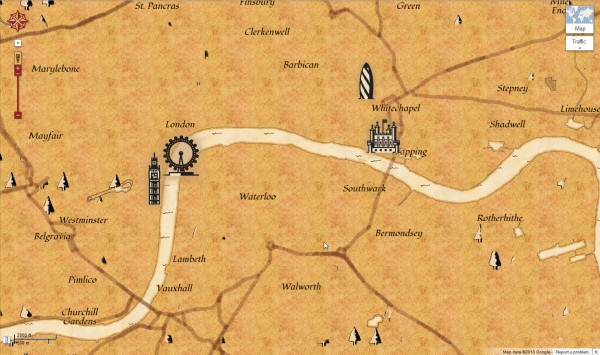
Google really embraces 1 April and some of its fools are excellent. This year’s highlight, for me, is a new Treasure Hunting mode in Google Maps (I’m currently using Bing for all my mapping needs, but I had to switch back to Google just to try this).
According to the search giant, "Treasure Maps is our Beta Maps technology and has certain system requirements. Your system may not be able to display at higher resolutions than paper print. Take care when unfolding the map to avoid ripping it".
Once activated, the view switches to a hand drawn map on parchment that features rivers, trees, cactus, and major landmarks. There are also treasure chests hidden around for you find. I've come across one so far (I tried searching for "treasure" in the search box, but to no avail), but I've also found a giant rabbit, a skull and crossbones, Psy doing Gangnam Style in Seoul, and other goodies.
 In place of the usual Street View, there’s an amusing sepia "Telescope View" to peer through.
In place of the usual Street View, there’s an amusing sepia "Telescope View" to peer through.Google has also created an amusing YouTube video to explain the reason for the new mapping mode.
Something this good really needs to be kept for longer than one day. At the very least it should make a reappearance for International Talk Like A Pirate Day (19 Sept).
Have you found anything good?
-

Try Windows Blue for yourself using VirtualBox
Publié: mars 26, 2013, 11:50am CET par Wayne Williams
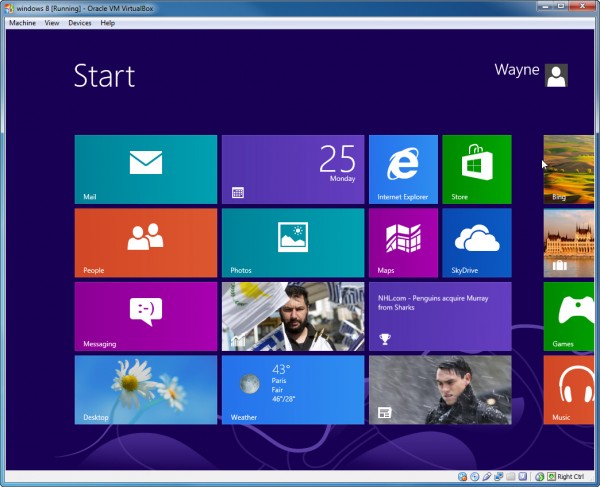
Windows Blue, the next Windows release, leaked onto the internet at the weekend. It has some interesting new features and tweaks, but because it’s such an early and buggy build it wouldn’t be advisable to replace your existing OS with it. You could of course dual boot from it, but it’s just as easy to run it in a virtual environment where any crashes or issues won’t lead to you having to reboot your PC.
For this guide I’ll use Oracle VM VirtualBox because it’s a great free program and setting up Windows Blue is incredibly straightforward with it.
To start you’ll obviously need a copy of the leaked image file -- build 9364. It’s available on all the usual torrent sites, so just do a quick search. The file you want is 2.63GB in size. There’s only a 32-bit version available, but because we’ll be running it in a virtualized environment, it will run fine on 64-bit systems.
Launch VirtualBox and click New in the Manager. In the Create Virtual Machine dialog box enter "Windows 8" as the name of the OS. VirtualBox will fill in the rest of the details for you.
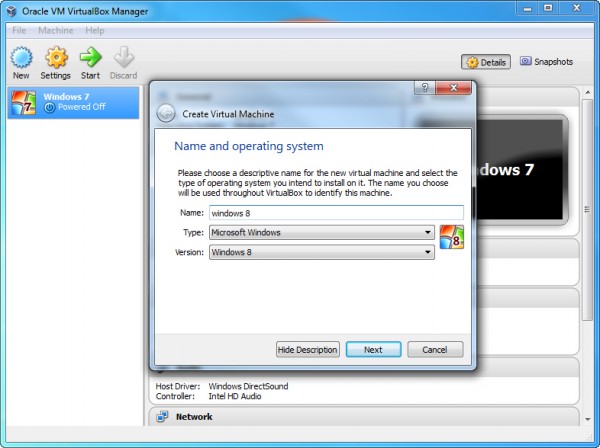
Next set the Memory Size. Accepting the recommended memory amount will likely be fine. On the next screen choose to "Create a virtual hard drive now" and click Create. Accept VDI (VirtualBox Disk Image) as the hard drive file type.
You’ll now be asked if you want the new virtual hard drive to be dynamic (it will grow as required) or a fixed size. I always select the latter option. It takes a while to create a fixed size drive, but the operating system runs faster afterwards.
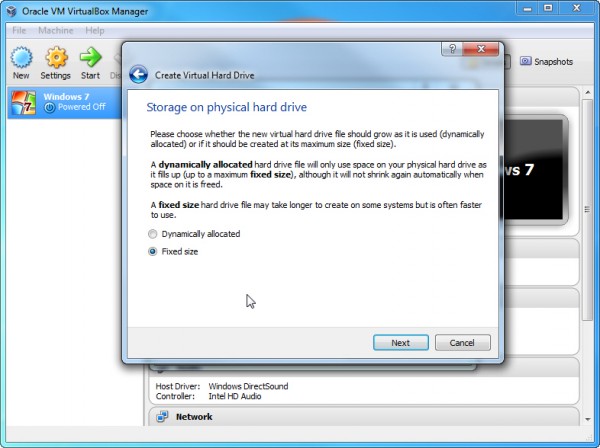
Type in a name for the new virtual drive and choose a size for it. Again, accepting the default will likely be fine. Click Create and VirtualBox will begin building the drive. It will probably take around 10 minutes or so to do this (maybe more if like me you choose to convert some large videos at the same time).
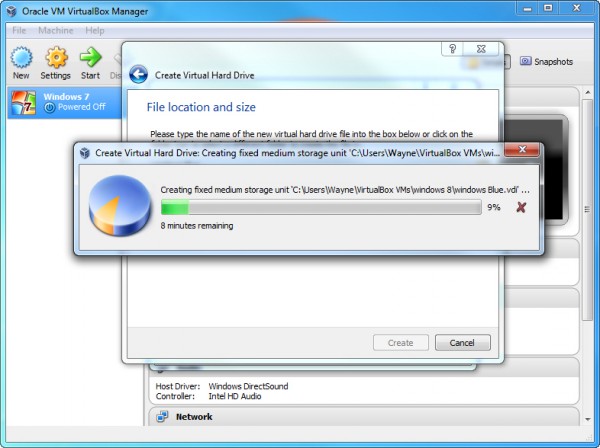
The "Select start-up disk" window will open. If you’ve burnt the downloaded ISO file to disc you can select your drive in the drop down menu (if it’s not already selected). If you just have the file residing on your hard disk, click the folder icon and navigate to it instead.
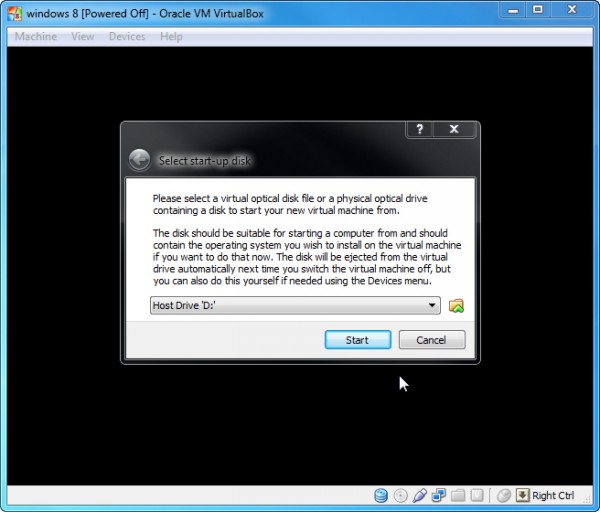
Once selected, click Start and Windows 8 (which is what the OS is referred to throughout) will start to load. The language screen will appear first. You’ll have to accept English (United States) as this is the only option in the leaked build. On the next screen, click the "Install now" button.
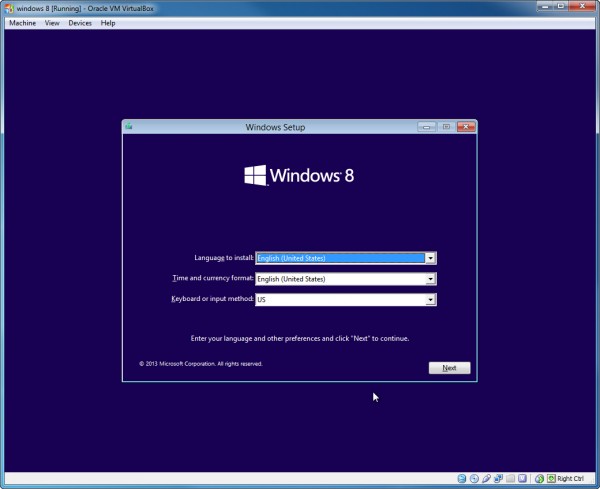
Choose the "Custom: Install windows only (advanced)" option. It will show you the drive it’s going to be installed on. Click Next, and it will begin the installation process, rebooting when required. When that’s done, personalize the OS by picking a color and entering a PC name, and then choosing to use the express settings (which I do) or customizing things further.
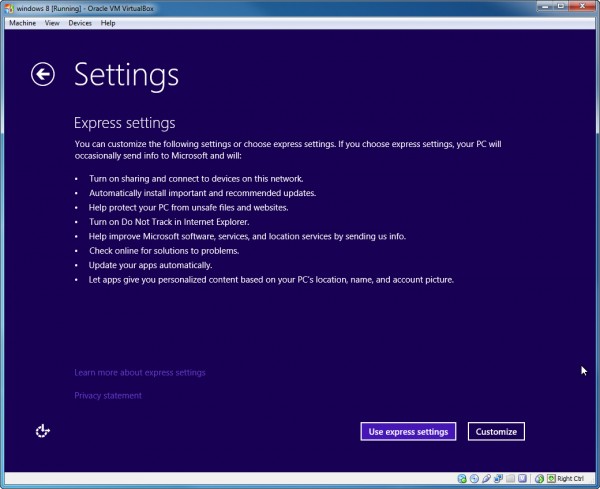
Set up a Microsoft Account if required, and then that’s it. Windows Blue will be up and running and you can begin trying it out for yourself.
-

Is it time for Microsoft to make big changes to Windows 8?
Publié: mars 25, 2013, 12:35pm CET par Wayne Williams
 So a very early build of the next version of Windows has leaked online. Codenamed Windows Blue it includes features such as additional Snap Views and changes to the Charms. There’s nothing to get too excited about here, not yet at least.
So a very early build of the next version of Windows has leaked online. Codenamed Windows Blue it includes features such as additional Snap Views and changes to the Charms. There’s nothing to get too excited about here, not yet at least.But I’ve been wondering lately, if it isn’t time for Microsoft to change course and steer away a little from the direction it set with Windows 8. There’s no sign of that happening in the Windows Blue leak, but that doesn’t mean we won’t see more fundamental changes added to the new version as development progresses.
Although we still don’t know how well Windows 8 is selling, we do know it’s not exactly setting the world on fire. Microsoft told us it had sold 60 million licenses, but no one outside of the software giant knows how many users that equates to. But we do know PC sales are dire, and Windows 8 hasn’t just failed to boost numbers, it’s at least partially responsible for their decline.
It seems clear at this point that Microsoft has two options. It can stay the course and hope sales and adoption pick up. That tablets running the operating system really take off, and people and businesses embrace the brave new world that is Windows 8 and RT. Or it can tweak the OS to make it more appealing to the masses who still use PCs and spend most of their time on the desktop.
The problem is Microsoft really is between a rock and a hard place here. It needs people to accept apps and the modern UI as the future -- this is what links every device, from PCs and tablets to the Windows Phone, after all. People bemoan the fact that you have to go through the Modern UI to get to the desktop, and there’s a thriving market of companies producing software designed to bypass the Start screen, but Microsoft knew from the word go that it couldn’t bake in a simple skip option itself. It needs users to get used to the new front end, to encourage them to download and use apps, which wouldn’t happen if everyone was skipping the Modern UI. App use leads to app creation, leads to app use.
But maybe this restriction is what’s holding Windows 8 back. If Microsoft gives in a little and provides direct access to the desktop in Windows Blue, maybe the reinvented operating system won’t be such a turn off for PC users. After all, Windows 8 is a lot more than a touch friendly, app centric interface. Beneath that divisive veneer lurks a damn fine operating system.
The other issue Windows 8 has is the lack of official apps. And that’s partly down to the fact that it isn’t seeing the level of adoption that would make it a must develop-for platform. For a lot of firms, like Google, Facebook and the BBC, there’s no reason to make apps for Windows 8, there's no benefit. Lack of OS adoption leads to lack of app creation, leads to lack of OS adoption.
So my question is should Microsoft accept its bold vision is a little too bold, and make concessions to the operating system to encourage people to get on board, or should it stick to its guns and just focus on making the best OS it can -- entirely on its own terms?
Personally I’ve pretty much come full circle with Windows 8. When I first used the Developer Preview I quite liked it. The more I used the OS (the subsequent previews and the actual release), the less I liked it. Then I accepted it, and finally I sort of quite like it again. It's just very different from previous versions of Windows, and when you’re used to working one way, having to learn to do things differently is an inconvenience.
Still, I know Windows 8 is a topic that BetaNews readers have strong viewpoints on, so I’d like to know what you think Microsoft should do. Comments below please.
Photo Credit: Eray KULA/Shutterstock
-

Foursquare video reveals the twin pulses of New York City and Tokyo
Publié: mars 22, 2013, 1:43pm CET par Wayne Williams
 Millions of people around the world use Foursquare to check into places they visit. The company has taken a year’s worth of these check-ins at two of the planet’s largest cities -- New York and Tokyo -- and plotted them on a map.
Millions of people around the world use Foursquare to check into places they visit. The company has taken a year’s worth of these check-ins at two of the planet’s largest cities -- New York and Tokyo -- and plotted them on a map.The result is a video that runs from 4AM right round the clock and up to 2AM, showing the cities pulsing as they come to life and then die back down again.
Dots represent single check-ins, and straight lines link sequential ones. Each check-in is color coded and a key on the left hand side of the video shows you what each one represents. Red is residence, green is food, cyan is arts & entertainment, and so on. You’ll need to view the video full screen to really discern the difference.
The result is an attractive almost mesmerizing look at life in two great cities. As Jon Parker comments under the video, it also provides an insight into just how many people feel obliged to check-in on bridges.
Photo Credit: andrea michele piacquadio/Shutterstock
-

Google shutting down Reader is great news
Publié: mars 21, 2013, 3:48pm CET par Wayne Williams
 I’m a big fan of Google Reader. I don’t just access it every day, I access it, probably on average, every couple of hours or so (and still do, despite my switch to Microsoft). I have hundreds of feeds in there, and thousands of stories starred. So really I should be gutted that Google has decided to kill it off. But I’m not.
I’m a big fan of Google Reader. I don’t just access it every day, I access it, probably on average, every couple of hours or so (and still do, despite my switch to Microsoft). I have hundreds of feeds in there, and thousands of stories starred. So really I should be gutted that Google has decided to kill it off. But I’m not.I was at first though. I even signed the petition to get Google to change its mind, even though I knew it was futile. But then I took a step back and realized that what initially seemed like devastating news for a Reader fan such as myself, was actually a blessing in disguise.
Google has slowly been killing off Reader for a while. The service had a minor interface refresh in 2011, but only so Google could turn off friending, following, sharing items, and commenting in favor of adding Google+ integration, which reduced the service’s usefulness for a lot of people. While Google Reader has continued to serve its core purpose, it hasn’t grown, or evolved. In fact it’s been left to stagnate, unloved and all but forgotten. Its end for a long time has been nigh.
Google says a dwindling user base is the reason it plans to end Reader’s life on 1 July, but it’s a dwindling user base that Google itself engineered. If it had pushed the service, sold the benefits of it, updated it, added features and re-introduced sharing, Reader use would likely have grown and flourished, not withered and died. But Google doesn’t want Reader any more. It wants us to forget about feeds and embrace social sharing instead. It wants us to embrace Google+.
RSS Isn’t Dead
With Reader as the dominant service, but left to stagnate, RSS as a technology has largely fallen out of favor (arguably it never reached its true potential anyway). But now that Google is closing Reader -- the search giant removed the service’s entry from the black menu bar that runs along the top of Google pages yesterday -- suddenly feed readers are back in the news. Services like Feedly are getting a huge amount of new users as the Reader exodus begins in earnest. And alternatives many of us have never heard of, such as The Old Reader, NewsBlur, Goodnoows, and Rolio, are all picking up thousands of new users too. Services that previously would have struggled to get anyone to choose them over Reader are now enjoying massive growth. There’s competition once more in the world of feed readers, and competition is always good. It’s what drives success and innovation.
While I’ve yet to settle on a Google Reader replacement I really like, I’m not too worried. Digg says it is working on a new RSS tool which should be ready by the time Reader goes under, and I’m sure Digg won’t be the only company building a service for all those many Reader refugees who’ll be left without a home when Google does pull the plug.
After all there are hundreds of thousands of users who still believe in and rely on RSS, even if Google no longer cares about them. And a lot of those people looking for a good service are influential journalists, bloggers and people who like to ensure they have their finger on the news pulse at all times. They’re good people for any media savvy firm to cater for.
Yahoo would be a great fit for a Reader alternative, as would Microsoft (although I can’t see the latter building an online RSS service when it offers feeds directly through Internet Explorer, and RSS lacks the cool the company craves anyway).
Google abandoning Reader actually reminds me of when Microsoft stopped development on Internet Explorer at IE6. MS believed the browser couldn’t be improved and so left it alone, left it to stagnate. And that was exactly what was required for Mozilla to steal a massive chunk of users with a modern browser that was being actively developed and introduced hot new features, like tabs.
In closing Reader, Google hasn’t killed off RSS, it’s simply released its choke hold on the technology, and with luck -- if the right savior surfaces at the right time -- maybe we’ll finally get the product Reader could have become, with the sharing and commenting features that Google took away restored once more.
Or is that all just wishful thinking on my behalf?
Photo Credit: Aaron Amat/Shutterstock
-

Kinvey adds an Enterprise Edition to its Backend as a Service platform
Publié: mars 21, 2013, 2:20pm CET par Wayne Williams
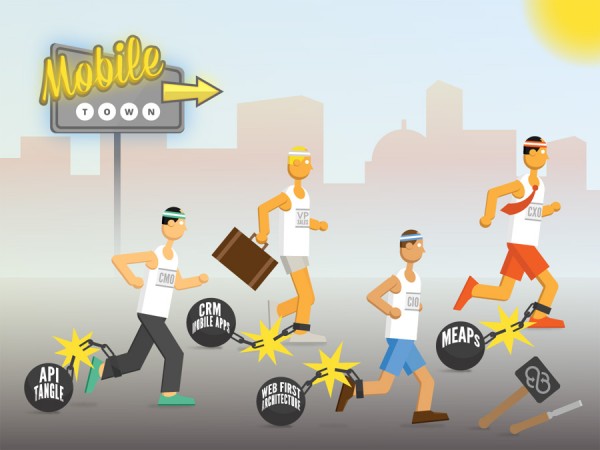 Kinvey, a Backend as a Service (BaaS) company that helps developers set up and operate scalable cloud backends for mobile, tablet and web apps, is branching out with a new Enterprise Edition.
Kinvey, a Backend as a Service (BaaS) company that helps developers set up and operate scalable cloud backends for mobile, tablet and web apps, is branching out with a new Enterprise Edition.According to the firm, the new platform integrates with various enterprise backend systems including Oracle, Salesforce CRM, LDAP and Active Directory, and will allow developers to easily create their own enterprise-grade mobile applications.
The Enterprise Edition combines Kinvey’s Data Links technology (which the company says was designed to "mobilize" data from virtually any source to any device, on any platform) with Authentication Links to enable businesses to rapidly prototype, publish and maintain their apps, while adhering to strict security and authentication protocols. The platform also comes with an enterprise-grade Service Level Agreement.
With the new Enterprise Edition Kinvey is intending to position itself against Mobile Enterprise Application Platforms (MEAPs). Sravish Sridhar, founder and CEO of Kinvey, explains: "Historically, enterprise app developers have been forced to make an unfortunate choice: agility or security. Those who’ve selected a MEAP have forfeited agility. We expect to see MEAPs begin to roll out on-prem BaaS solutions, requiring yet another false choice. Enterprise app developers and architects demand the flexibility of private or public cloud options".
Pricing for the new platform will be based on the number of integrations to databases and authentication systems required.
-

Switching from Google to Microsoft, part 2 -- Teething problems
Publié: mars 20, 2013, 4:12pm CET par Wayne Williams
 Second in a series. You know when you go somewhere on holiday and in a moment of fancy you think to yourself "I could live here"? But a small part of you knows deep down inside that the reality would be very different from the fantasy? That’s a bit like what my first experience of swapping from Google to Microsoft has been like so far.
Second in a series. You know when you go somewhere on holiday and in a moment of fancy you think to yourself "I could live here"? But a small part of you knows deep down inside that the reality would be very different from the fantasy? That’s a bit like what my first experience of swapping from Google to Microsoft has been like so far.I’ve used Internet Explorer on and off over the years, but I’ve never used it for very long. The last time it was my main browser was in 2003, ten years ago. Similarly I’ve used Outlook.com since it launched, but not as my main email provider. So in setting them up to use on a daily continual basis I’ve found it all quite odd. I’m adrift in a place where they do things differently. Not worse -- well not really -- just differently.
Trying to set up Outlook.com to send and receive emails from my Gmail account was an interesting experience. I went into Email Settings in Outlook.com, clicked "Your email accounts" and then clicked "Add a send-and-receive account". I filled in my email address and password where prompted and clicked Next. And then some sort of alarm went off at Google HQ -- with dire red alerts appearing on every Google page imaginable, including YouTube, telling me that someone had tried to access my account and advising me to change my password.
I calmed Google down, told it that it was me accessing my account (Google for its part remained utterly unconvinced and demanded I sign a waiver), and then I went back into Outlook.com and tried again to set things up properly this time. The "Add a send-and-receive account" wizard didn’t want to be very wizardly, and just refused to do anything aside from tell me that I needed to enable "POP Download" in Gmail. POP was already enabled, so I decided to just go into Gmail settings and configure forwarding there, then set up a sending only account for Gmail in Outlook.com, which worked fine. And then, more out of curiosity rather than anything else, I went back to the "Add a send-and-receive account" and added my second Gmail account. Everything worked fine this time. Very odd.
Setting Up Internet Explorer
Switching from Firefox to Chrome was incredibly easy. Switching from Chrome to IE was a bit more awkward. I don’t ever use the Modern UI version of Internet Explorer 10, because I hardly ever only have just one site open, and the desktop version is better suited to my needs (it allows me to jump between open pages much quicker). I imported my bookmarks/favorites from Chrome to IE10 without any real drama, but they were imported in an apparently random order which took a while to organize because I have around a hundred or more!
I have a folder of bookmarks of favorite sites that I open every morning. IE had no problem opening these but for some reason decided to change the zoom on half of them. So some pages required a magnifying glass to read, while others I could make out very clearly from the other side of the room. I adjusted the zoom for all of the pages to 100 percent and now everything is more or less fine. I’ve no idea what that was all about, and it won’t do it again, so maybe Internet Explorer recognized me as the new boy and was welcoming me with a spot of hazing.
I then finished off by customizing IE to make it more useable. As someone who likes to have a ridiculous amount of tabs open at all times, I had to move the tab bar on to a separate row so I could actually see the tabs properly. I have to assume people who usually use Internet Explorer only have a maximum of two tabs open at a time, because with the giant address bar there’s not much room for any more.
Similarly, because I have so many tabs open I don’t want thumbnails of all of them to display when I mouse over the IE button on the taskbar, so I went back into settings and killed that feature.
Now I’m using it all the time, IE’s page rendering looks really weird (Amazon in particular looks awful -- the writing is very small, and even blown up to 125 percent it’s not great), but that’s something I guess I’ll get used to quickly enough. There’s nothing really wrong with it, I hasten to add, it’s just not what I’m used to.
On to add-ons next. I have Adblock Plus installed on Firefox and Chrome, but it isn’t available for IE, so I’ll have to find a replacement, or just have ads. The majority of the add-ons I use for Firefox and Chrome aren’t available, so I’m going to try and just use the vanilla version of Internet Explorer for a while, and then seek out any add-ons I find I really can’t live without.
Interestingly, while writing this IE10 has twice replaced Outlook.com with message starting "This page can't be displayed" and suggesting solutions for the problem. A problem that neither Firefox nor Chrome has. I really hope that’s not a sign of things to come or this could be a very short lived experiment.
Photo Credit: Sam72/Shutterstock
-

It sold a million units in a single year -- so what's next for Raspberry Pi? [Q&A]
Publié: mars 19, 2013, 2:37pm CET par Wayne Williams
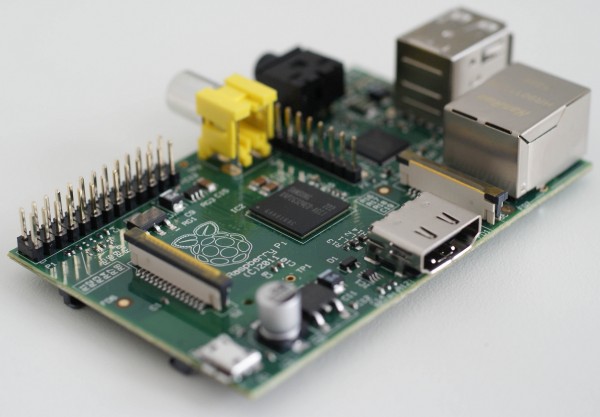 I’m a huge fan of Raspberry Pi, the super-affordable ARM GNU/Linux computer that’s bringing programming back into schools (and beyond). In one year alone, more than a million Pis have been sold globally, which is a phenomenal achievement, and demand for the uncased credit card-sized device shows no signs of abating.
I’m a huge fan of Raspberry Pi, the super-affordable ARM GNU/Linux computer that’s bringing programming back into schools (and beyond). In one year alone, more than a million Pis have been sold globally, which is a phenomenal achievement, and demand for the uncased credit card-sized device shows no signs of abating.I chatted to Liz Upton, Head of Communications at Raspberry Pi Foundation (and wife of the foundation’s Executive Director Eben), about their eventful first year, and plans for the future.
BN: How did the idea of Raspberry Pi come about?
LU: Back in 2006, when Eben was teaching at the University of Cambridge he started to notice a decline in both the numbers of kids applying to read Computer Science, and in the level of knowledge that those kids arrived at the university with. We talked about it with our friends in the pub, like you do. And plenty of them thought it was a real problem too -- some of them thought it was such a problem that we came together and decided we'd try to do something about it. We had a hypothesis: that the fall in numbers and skills had to do with the disappearance of programmable machines in kids' lives. Computers like the BBC Micro or the Amiga had been replaced from the bottom end by sealed-unit, black-box consoles, whose whole business model is that you shouldn't be able to program them. And from the top, there was the PC. Of course, a PC is a wonderfully programmable machine; but in most families it's also a very vital tool for family life. It's where you do your banking or your homework. And many kids aren't allowed to mess around with the family PC for fear of breaking it. We felt a very cheap, programmable unit that kids could buy with their own pocket money, so they had a sense of ownership, was a possible solution. It's still early days, but on seeing some of the kids who've had a Pi for some months now, I've a feeling we were on to something.
BN: Where did the name come from?
LU: "Raspberry" comes from the tech industry's fondness for fruit names (there are lots of fruit-named computer companies, like Apricot, Tangerine…those, of course, are the only ones I can think of off the top of my head). And "Pi" is for Python, which has always been our first choice of teaching language (it was even before we knew what the hardware would look like). We initially thought that using Pi rather than Py would make for a really nice logo in the shape of the Greek letter, but as you can see, we didn't actually end up going that way!
BN: You’ve just sold your millionth Pi. Are you surprised by its success?
LU: Around the end of 2011, just before we started selling Pis, we started to worry that perhaps we'd bitten off more than we could chew. We'd managed to raise enough capital among ourselves to produce 20,000, and the plan was to use the profits from those Pis to seed the next batch (which would have taken a couple of months to make), and so on. We realized that we might have a problem on the day when we made a pre-released OS available for the Pi, well before anyone actually had one -- all of a sudden 60,000 people arrived on our website and downloaded this buggy software for a platform that didn't even exist yet. It suggested that the demand was much, much bigger than we'd anticipated. We decided that we'd need to revise the business model, because there was no way we could make enough fast enough with the resources we had to satisfy the sort of demand we were seeing. So we approached RS and Farnell, two British components companies which already had world-wide distribution networks in place, to see if they'd be interested in manufacturing the Pis for us under license so we could build up to a workable level of stock immediately. That was an enormous help in trying to deal with the demand we were seeing, but as you're probably aware, we've still been running to keep up, even though there is currently one Pi coming off the production line in Wales every few seconds!
BN: Raspberry Pi seems like a very British project, a modern day BBC Micro, but it's been well received in America. Why do you think that is?
LU: I think that a need for access to tools is universal. And those problems of introducing kids to programming -- the ubiquity of the family PC and the games console -- are universal too, at least in the developed world. Industry is starting to notice a decline in standards in young people too; we work with a number of industry bodies in the UK and in the US which are also promoting proper computing for young people, because they don't want to see a situation where the skills base dries up and blows away either. Eben and I will be at Intel International Science and Engineering Fair in Phoenix in a couple of months, to do some work with the kids there. I love doing this stuff; and it's always so much fun in the US, with the American tradition of science fairs (which we don't have a real equivalent of in the UK).
BN: The Pi is manufactured in the UK. Why did you switch from China?
LU: Moving production to the UK was a purely pragmatic decision: the Sony factory in Pencoed, South Wales, was able to match the prices we were seeing in China because they use a lot of smart automation and lean practices. It's far more convenient for us; if there's a problem we can jump in the car and be there in a few hours, and there's no language or cultural barrier. And Sony really knows how to build a robust, quality product.
We really wanted to manufacture in the UK from the start, but none of the factories we spoke to when the Pi was under development (we weren't aware that Sony had a plant with the capacity to do this back then) were prepared to risk producing a machine for a company with no proven track record and a fuzzy idea of what sales might look like. So we did what so many small manufacturers do, and went to China, where factories were prepared to deal with what we thought at the time would be small volumes.
From a patriotic point of view, it's been absolutely wonderful to bring the Pi back home. Eben was born about ten miles away from the factory where the Pis are made, and we still have family out there, so we know the area pretty well. South Wales is one of those places which had a rich manufacturing heritage and used to be quite wealthy, but it's changed dramatically as the UK's manufacturing industry has declined. So we're really, really delighted to be able to bring some jobs back to the area, and to be able to demonstrate to people that yes, you can build in the UK for the same amount of money you'd be spending overseas. We'd love to see more electronics companies in this country do the same; it's great for the economy, and there's a real sense of pride in being able to write "Made in the UK" on your product.
BN: How did the Minecraft Pi edition come about?
LU: We think that a hook, something that isn't on-the-face-of-it educational, is vital if you're going to make something desirable to kids. After all, I learned to program when I was a kid because I had a BBC Micro, I played games on it, and I wanted to make my own. That's not an unusual trajectory. Minecraft's a fantastic tool to get kids interested in what they can do with the platform -- and for the Pi Edition, Mojang made sure that the game API would be hackable, so kids are encouraged to do a little programming in-game to make their Minecraft world swankier. We've seen some great stuff come out of that; kids are making analogue clocks in the Minecraft world, and great big 3D versions of games like Snake and Pacman.
BN: Any other similar tie in projects planned. An Elite: Dangerous version perhaps?
LU: I really ought to twist David's arm on that one! [David Braben, co-author of Elite is one of the Raspberry Pi Foundation’s trustees]
BN: What are some of your favorite Pi community projects?
LU: That's becoming an increasingly hard question to answer. There are so many projects out there that we find at least one thing every day that's impressive enough to make our blog. It's hard to beat the Beet Box for humor -- it's a project which uses a Pi and a Makey Makey to make a capacitive-touch drum kit out of root vegetables. There's loads of fun stuff like that. But if we're being serious, I've been most touched by some of the adaptive technology we've seen being made with the Pi; there was a guy who made a single-button audiobook machine for his elderly grandmother, who has very limited vision and mobility, and loves books. Hit the button once: your book starts. Hit it again: it stops. And when you get to the end, it automatically starts the next book. It's not difficult or terribly complicated technology, but it's made a huge difference to one lady's life.
BN: You've had an eventful first year. What have been some of the highlights for you?
LU: It's not the awards or the sales figures: the thing that really gets me is watching people's lives change because of this thing we're doing. Paul Beech, the guy who won the competition we ran to find a logo, is a great example: when we met him he was a freelance designer, but in the last year he's set up a company called Pimoroni, with a small factory and a bunch of employees to make Pi cases and other neat Pi stuff. They're great; they make a big effort in their local community in Sheffield to support making and hacking; and they're bringing jobs to another part of the UK where manufacturing decline has left things very depressed. Liam Fraser, who was still at school when he first came across the Pi, has done a load of volunteering for the Foundation, and has got a year's work with a company in Cambridge off the back of that, and a much more impressive university application form. People are building businesses around the Pi; we think entrepreneurship makes the world spin, so it's wonderful to watch that happening. And, of course, there are the jobs that have come to Wales as a result of the Pi. That's probably the single thing that makes me proudest.
Oh -- and last year, Steve Furber [principal designer of the BBC Micro and the ARM microprocessor] shook my hand and told me I was doing a great job. Serious hero-worship moment.
BN: You’ve got a camera board coming out in April that will allow Pi users to build video applications. Any other similar add-ons planned?
LU: We're looking at a display board too, but that's currently in the very early stages.
BN: What does the future hold for the Pi -- new versions?
LU: The Foundation's committed to making sure that we don't suddenly up-sticks and change the platform under people's feet: the open community has been very good to us, and the last thing we want to do is to make the work they've done on the available software redundant. We want to continue selling the Raspberry Pi Model B for a good long time yet; we do have a final hardware revision to make, but the platform will be set in stone after that. We don't have plans to make a new Pi at the moment; what we are putting a lot of effort into is improving the software stack. We reckon there are orders of magnitude of performance increases we can shake out of Scratch, for example; and this isn't stuff you can expect the community to do, because it's a very long and fiddly job. So Scratch, Wayland, Smalltalk: you should see some big improvements coming over this year. We're also switching a lot of our concentration to our educational mission this year, after a year spent scrambling to get on top of manufacture.
Photo credit: gijsbertpeijs
-

Sorry Google, I’m switching to Microsoft
Publié: mars 18, 2013, 1:17pm CET par Wayne Williams
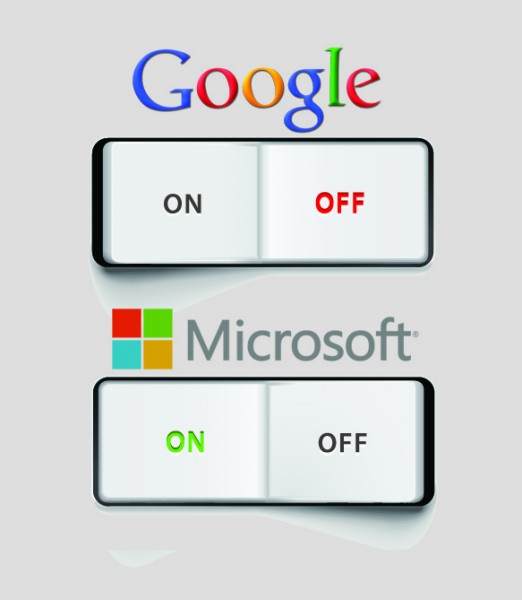 A week ago, I had a dream. I was sitting on a beach with a glass of wine and a laptop and I was searching the internet using Bing. My wife came up, saw what I was doing, and said "Why aren’t you using Google?" To which I replied, "I’m boycotting it. The company shutdown Reader." Yes, that’s right, I dreamt Reader was being shuttered before Google even announced it, and now I’m using Bing. Spooky or what?
A week ago, I had a dream. I was sitting on a beach with a glass of wine and a laptop and I was searching the internet using Bing. My wife came up, saw what I was doing, and said "Why aren’t you using Google?" To which I replied, "I’m boycotting it. The company shutdown Reader." Yes, that’s right, I dreamt Reader was being shuttered before Google even announced it, and now I’m using Bing. Spooky or what?But let’s make one thing very clear here. Although I plan to switch to using Microsoft’s services for a while, it’s not a boycott. I realized, after the dream, that I’ve been so tied into Google that I’ve never really given Microsoft’s alternatives -- Bing, Outlook.com, Bing Maps, and even Internet Explorer -- a fair chance to see how they compare. I've used them, in passing at least, but I've never used them full time. And today that’s about to change.
From now, I’m going to start using Outlook.com as my primary email account (still using my Gmail addresses to send and receive messages of course) and Internet Explorer as my web browser. Having only just really made the full time transition from Firefox to Chrome, that will take a while to get used to.
I’ll be searching exclusively through Bing, which is easy as it’s the default in IE anyway, and using Bing Maps instead of Google Maps. I already have SkyDrive set up through Windows 8, so I’ll switch to using that entirely, in place of Google Drive. Where there’s a straight replacement for an occasional Google service -- Bing Translator, for example -- I’ll use that. My aim, really, is just to fully immerse myself in Microsoft’s services, and to get a real idea of how they compare.
Change Can Be Good
A few years ago I was a die-hard iPhone user, but then I switched to a Galaxy S II, and then to an S III, and while I still own (and love) my iPad, I can’t see myself ever going back to the iPhone -- well not without a huge incentive. Because I use my Samsung phone all the time, I’ve become so used to how it works, what features and apps are where, that switching back to an iPhone will seem like a retrograde step. The same is true with Windows 8. Although the OS could stand a lot of improving, I’m used to it now, and prefer the way a lot of things are done in it. When I switch back to Windows 7, it seems odd and (admitting this feels weird) not as good.
I’m thinking by committing myself to Microsoft’s services, forsaking Google’s, I might -- just might -- end up preferring at least one if not more of them. I might discover features and ways of doing things that are better and that I will miss if I switch back to Google.
Or I might end up realizing just how much better Google is at everything. We’ll see.
I'm not the first BetaNews writer to try giving up Google. My colleague Joe Wilcox did something similar two years ago. Worried that he’d sold his soul to the Mountain View, Calif.-based company he tried to swap as many Google products for alternatives, including Microsoft services. Ultimately he failed.
Because my plan isn’t a boycott, or -- like Joe’s idea -- an attempt to entirely remove Google from my life, I will still use some of the big G’s products. I have an Android phone and won’t be swapping it for a Nokia Lumia. Microsoft doesn’t have anything that competes with YouTube (aside from Bing Videos), so I’ll have to stay with that. I use Google Reader religiously, but I may take the opportunity to switch to Feedly, because I’ll have to at some point anyway, so it might as well be now.
These are the Google products I intend to try and replace with Microsoft ones.
- Google Search -- Bing
- Google Images -- Bing Images
- Google News -- Bing News
- Google Maps -- Bing Maps
- Gmail -- Outlook.com
- Chrome -- Internet Explorer
- Google Talk/Chat -- Skype
- Google Drive -- SkyDrive
- Google Translate -- Bing Translator
- Google Shopping -- Bing Shopping
In a month, give or take, I’ll report back on how I got on, and what -- if anything -- I learnt from the experience and which Microsoft services I loved and preferred, and which I couldn’t wait to give up. In between then and now I’ll also report on any discoveries I’ve made. Like, for example, the fun that’s involved in switching from Gmail to Outlook.com full time.
I’m curious though, have you switched from one of Google’s products or services to a Microsoft alternative, and if so which one(s). And what made you change? Comments below please.
Photo Credit: Pixotico /Shutterstock
-

Clean Master frees up space and resources on your Android device
Publié: mars 18, 2013, 12:12pm CET par Wayne Williams
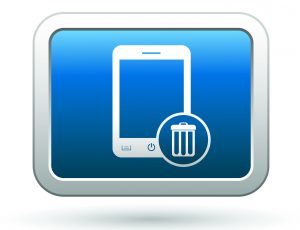 Piriform’s CCleaner is on its way to Android smartphones, but there are powerful all-in-one cleaning apps already available on Google Play, such as Clean Master.
Piriform’s CCleaner is on its way to Android smartphones, but there are powerful all-in-one cleaning apps already available on Google Play, such as Clean Master.The app, which has just received an update, can clean the cache, removing unused files, residual files, and clear search history. The app can also kill running tasks to free up more RAM, and let you uninstall any apps you rarely (if ever) use.
The main screen shows how much space -- used and free -- you have on your SD card and in your device’s on board storage. From here you can also access the History cleaner, Privacy cleaner, Tasks, and App Manager options.
Tap on History and you can view and clear the cache contents (which includes content stored by the likes of Gmail, Facebook, and your web browser). Some items can be selected and cleaned individually, but most can’t. You can also select and remove individual residual files, such as temporary files and very large items, like video clips (make sure you back these up before deleting of course).
The Privacy section lets you clear individual SMS/MMS conversations and messages, as well as call logs, search history, and content from Gmail, Facebook, YouTube, Google+ and your browser.
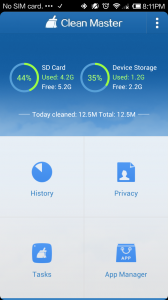 The Task option lets you add a list of tasks and stop and clean any of them, while the App Manager lets you uninstall or backup your apps.
The Task option lets you add a list of tasks and stop and clean any of them, while the App Manager lets you uninstall or backup your apps.The new version adds two extra features which can be accessed through Settings on the front screen. There’s a Scheduled Cache Cleaner which lets you set a reminder and specify a frequency (clean every day, every three days, every week, or every 15 days), and cache size target (50MB, 100MB, 300MB, 500MB). The Auto Kill option will clean background tasks automatically and go to work when your device is idle (when the screen is off).
If a tidy Android device, with the maximum free space and minimum clutter is important to you, Clean Master is definitely worth an install, especially as it’s free and doesn’t come with any annoying adverts.
Photo Credit: ARNICA/Shutterstock
-

'NotCompatible' Android malware now being spread through spam
Publié: mars 15, 2013, 6:04pm CET par Wayne Williams
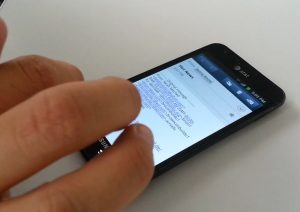 Security firm Lookout reports that it has a seen a staggering increase in the number of NotCompatible detections this week. While not a new threat (it first appeared last May), the remote proxy malware has moved on from infecting Android devices through hacked websites and is now spreading via email spam.
Security firm Lookout reports that it has a seen a staggering increase in the number of NotCompatible detections this week. While not a new threat (it first appeared last May), the remote proxy malware has moved on from infecting Android devices through hacked websites and is now spreading via email spam.Once installed, NotCompatible turns the infected phone into a proxy which is used to commit online fraud, such as through the purchase of concert tickets.
In the past five days alone Lookout says it has detected more than 70,000 infections, peaking at almost 20,000 detections per day between Sunday and Monday, with 95 percent of them located in the US.
The threat is currently being spread from hacked email accounts. It tricks unwary users into clicking a link on their phones which redirects the browser to an "Android Security site" that then attempts to download and install the malware. The emails to avoid mostly have the subject line "Hot News", although I received one from a friend’s hacked account yesterday that was headed simply "Hey!"
 If you open the link on a computer or iOS device, as I did (in a controlled experiment), you’ll be taken to a fake Fox News article on weight loss.
If you open the link on a computer or iOS device, as I did (in a controlled experiment), you’ll be taken to a fake Fox News article on weight loss.To avoid becoming infected, just employ the same commonsense you would when opening an email on your computer. Don’t click any unfamiliar links and don’t open any downloaded files unless you know exactly what they are. You can of course install an antimalware tool on your mobile if you want to be extra safe.
Photo credit: Lookout
-

Bitrix24 launches free collaborative CRM with integrated project management
Publié: mars 15, 2013, 2:38pm CET par Wayne Williams
 Bitrix24 offers social intranet for enterprises and small to medium businesses, but with a twist -- the firm’s cloud-based service is entirely free for organizations with 12 or fewer users and includes 5GB of online storage space and essential tools, such as CRM (Customer Relationship Management), project management, and instant messaging.
Bitrix24 offers social intranet for enterprises and small to medium businesses, but with a twist -- the firm’s cloud-based service is entirely free for organizations with 12 or fewer users and includes 5GB of online storage space and essential tools, such as CRM (Customer Relationship Management), project management, and instant messaging.We’ve covered the firm’s service previously, but Bitrix24 has just rolled out a new version of its CRM platform that comes with project management fully integrated. Tasks, calendars and other similar tools are now available from within the CRM module and documents can be stored inside the CRM, attached to entries, and shared with employees (with different rights levels controlling access).
Explaining the update, Bitrix President Dmitry Valyanov said: "Some CRM vendors now offer integration with third party project management tools and vice-versa. CRM users are no longer satisfied with what’s essentially a database with client information -- they want a CRM that allows them to plan, to collaborate with co-workers and to increase personal productivity. SalesForce, for example, has spent almost a billion dollars in the last two years in acquisitions, trying to make their CRM more collaborative. But Bitrix24 is the first vendor that offers free a CRM fully fused with project management".
Speaking of the Russian firm’s rapid growth (it only launched last May) Valyanov added: "The decision to make Bitrix24 absolutely free for companies with 12 employees or less had an enormous impact on service popularity. In several Eastern European markets we are now the second most popular cloud CRM, despite being less than one year old. I am confident that this release will boost our visibility in North America as well".
Bitrix24 comes with free desktop apps for Windows and Mac OS X, and there are native apps available for iOS and Android devices.
Photo Credit: T. L. Furrer/Shutterstock
-

Google Translate now lets you build your own phrasebook
Publié: mars 15, 2013, 9:51am CET par Wayne Williams
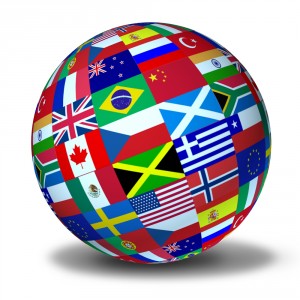 Before you go abroad, or meet someone from another country who speaks a different language, it can be useful to come up with some handy phrases to use. Even if it’s just "how are you?" and "nice to meet you".
Before you go abroad, or meet someone from another country who speaks a different language, it can be useful to come up with some handy phrases to use. Even if it’s just "how are you?" and "nice to meet you".You can probably memorize the basics quite quickly, but for more involved phrases you may require a bit of help to recall them, which is where Phrasebook for Google Translate comes in.
The new addition lets you save the most useful phrases for easy reference later on, hopefully also helping you commit them to memory. To use it, just translate something, then click the star icon under the translated text to add it to your phrasebook.You can view all of the stored translations by clicking the new Phrasebook icon. If you’re translating phrases into more than one language a drop down menu will let you filter your list by language pair (English > Spanish, English > French, French > English and so on).
Hovering your mouse over a phrase will display a text-to-speech option and you’ll be able to listen to how a native speaker says it.
Photo Credit: Lightspring/Shutterstock
-

Average broadband speed in UK homes now in double figures
Publié: mars 15, 2013, 9:17am CET par Wayne Williams
 Regulator Ofcom reports that in November 2012 the average speed of home broadband in the UK hit 12Mbps, up from 9Mbps in May of the same year. As someone with 100Mbps broadband, that still seems very slow to me, but of course there are various factors behind lower speeds -- cost and location mainly, plus many people simply don’t need superfast connections (or think they don’t).
Regulator Ofcom reports that in November 2012 the average speed of home broadband in the UK hit 12Mbps, up from 9Mbps in May of the same year. As someone with 100Mbps broadband, that still seems very slow to me, but of course there are various factors behind lower speeds -- cost and location mainly, plus many people simply don’t need superfast connections (or think they don’t).In the report, Ofcom noted that UK broadband speeds have trebled in the past four years, a trend that is set to continue, and likely accelerate, as services offering 30Mbps or above reach more rural areas and become more affordable.
Ofcom says that 13 percent of all broadband connections are now what it classes as "superfast", up from 5 percent the year before. The average speed of those superfast connections is now 44.6Mbps, up from 35.8Mbps in May.
The average upload speeds also increased considerably last year, rising from an 0.3Mbps average in May 2012, to 1.4Mbps in November.
Ofcom's chief executive Ed Richards said: "Our research shows that UK consumers are adopting faster broadband packages to cater for their increasing use of bandwidth-heavy services such as video streaming. The increase in the average number of connected devices in UK homes is also driving the need for speed".
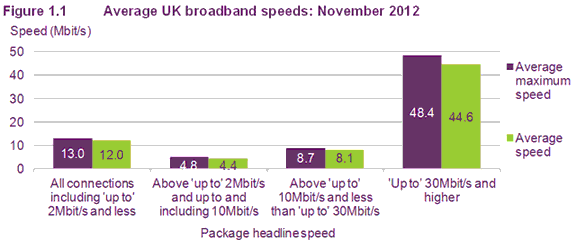
-

Think your broadband is too expensive? It costs $1,753 a month in Cuba
Publié: mars 14, 2013, 12:31pm CET par Wayne Williams
 Uptime monitoring firm Pingdom analyzed the latest report from the International Telecommunication Union (ITU) to discover how much the world is paying for its broadband, and its findings show some incredible variations in global broadband costs.
Uptime monitoring firm Pingdom analyzed the latest report from the International Telecommunication Union (ITU) to discover how much the world is paying for its broadband, and its findings show some incredible variations in global broadband costs.While broadband in most of the world’s countries is generally available for between $5 and $60 per month, in Cuba it’s an eye watering $1,753 (the country additionally has no mobile-broadband services available). In Swaziland, the next most expensive country in the list, it’s a lot cheaper, but still comes in at a very hefty $875 per month.
On the other side of the coin, if you’re looking for cheap broadband your best bet (albeit a rather extreme option) would be to move to Sri Lanka, where fixed broadband costs just $5.50 per month. It’s $6.10 in India, and a further ten other nations pay under $10 a month.
The low cost of broadband in countries like India and the Russian Federation is mostly down to a high level of competition among the suppliers and the wish of the governments to keep the prices down.
Pingdom is keen to point out that the prices listed by the ITU do "not necessarily reflect what a customer in the respective country would be paying for their broadband service. It’s instead a value intended to make comparisons between countries easier". ITU's figures are based on an entry-level broadband service.
In the US and the UK, the price of broadband is $20, while in Canada and Australia it's $29.50 and $39.30 respectively.
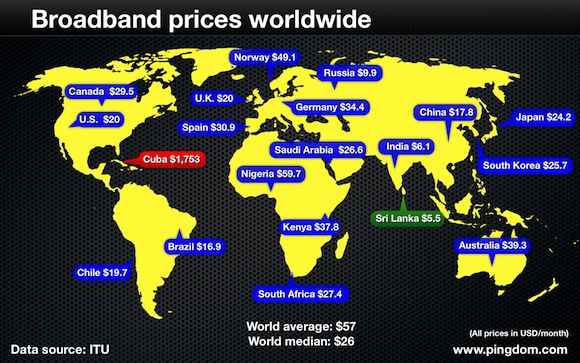
-

Twitter launches an official app for Windows 8 and RT
Publié: mars 14, 2013, 9:29am CET par Wayne Williams
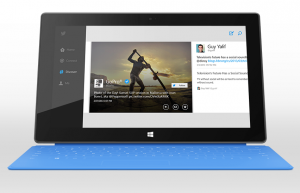 The lack of official apps for Windows 8 led to me describing the Windows Store as being like a Bangkok night market -- full of cheap knock offs. Well today Microsoft’s new OS got at least one big official app, with Twitter arriving for Windows 8 and RT.
The lack of official apps for Windows 8 led to me describing the Windows Store as being like a Bangkok night market -- full of cheap knock offs. Well today Microsoft’s new OS got at least one big official app, with Twitter arriving for Windows 8 and RT.It’s similar in design to Twitter’s web interface, and easy to use with Home, Connect, Discover, and Me tabs down the left hand side. Photos appear nice and large, and you can swipe to view multiple pictures. As you’d expect the app has a live tile, so you can see who’s replied to you, as well as view notifications for replies and direct messages.
It integrates quite smartly with Windows, allowing you to use the Search charm to find Twitter users to follow, and hashtags of interest, and you can share photos or content from another app (such as Internet Explorer) on Twitter via the Share charm.
If you like to keep an eye on Twitter while getting on with something else, you can snap the app to either the left or right hand side of the screen.
It’s all nicely done, even if it did take nearly five months to arrive…
-

Soluto: Our vision has always been to let people do more with their technology [Q&A]
Publié: mars 12, 2013, 2:59pm CET par Wayne Williams
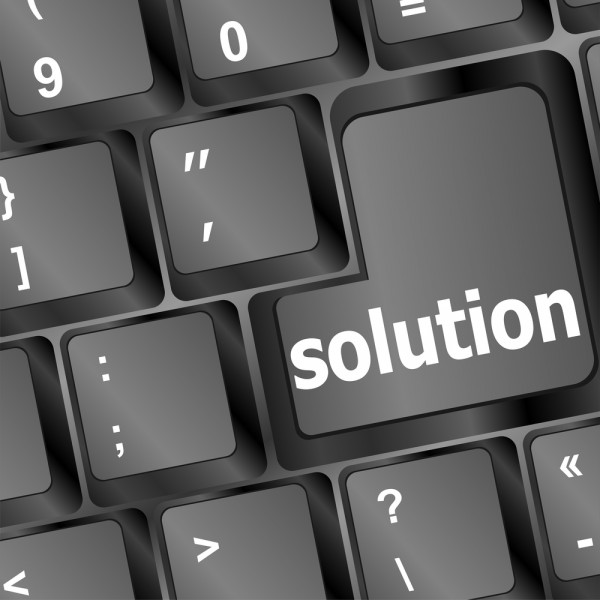 I've been a user, and a fan, of Soluto since the Tel Aviv-based PC management service launched back in 2010. It helped me reduce my boot time by a few seconds, but more importantly it halved the boot time of my in-laws' PC. A move to the cloud means the service now lets me remotely solve issues on several PCs belonging to less tech-savvy friends and family, and I'd definitely recommend it.
I've been a user, and a fan, of Soluto since the Tel Aviv-based PC management service launched back in 2010. It helped me reduce my boot time by a few seconds, but more importantly it halved the boot time of my in-laws' PC. A move to the cloud means the service now lets me remotely solve issues on several PCs belonging to less tech-savvy friends and family, and I'd definitely recommend it.Soluto offers various useful features -- it can cut boot times and de-clutter browsers; it will let you remotely manage system security, and even add a Start menu to Windows 8. By collecting anonymous user data, Soluto also offers a fascinating insight into PC use around the globe. Did you know, for example, that in Vietnam the average PC takes a minute less to boot up than PCs in the US and UK? I chatted to Tomer Dvir, Co-founder and CEO of Soluto, about the service, and he told me how it's evolved and how the Soluto community is actively working to find solutions to the system and software crashes that plague PC users everywhere.
BN: For the benefit of any readers not familiar with Soluto, can you tell me about the service and what it does?
TD: Soluto is a service for managing multiple PCs, designed for the small business IT person or just anyone who’s helping friends and family with their PCs.
Soluto makes it simple to support PCs -- it gives visibility into the managed PCs from any browser, wherever you are.
It helps you solve PC issues and undertake standard maintenance work (such as installing and updating apps, shortening boot time, monitoring PC hardware) without the need for using remote access. In addition, it allows you to keep the PCs you manage in top shape from anywhere even when they’re off without disrupting people’s ongoing work.
Most importantly -- Soluto notifies you by email when there is an important task on an individual PC that requires your immediate attention, thereby avoiding the need to constantly check the PCs.
BN: Soluto used to be a desktop program for speeding up Windows boot then it switched to the cloud, and added the ability to remotely manage/fix other people’s PC. Why the change?
TD: Our vision has always been to let people do more with their technology.
When we started building our first product, we focused on bringing the best out of a single PC. As we progressed, we wanted to let people manage more than one PC and let them do that from anywhere, which naturally led us to build a web-based service with remote access capabilities.
BN: You launched at TechCrunch Disrupt and won the competition. How did that affect the business?
TD: Launching Soluto at TechCrunch Disrupt and winning the competition was an awesome experience and a huge surprise for us (we launched a PC management service in a room full of 2,000+ Macs).
The immediate effect was a boost in downloads, and seven weeks following the competition Soluto had more than 500,000 downloads in over 150 countries. We didn't expect something that crazy and weren't ready to scale up so fast. We had to improve our solution so we could expand quickly; therefore, we decided to move to the cloud.
In addition to the technical aspect, the user scale we reached generated huge amounts of feedback that was really eye-opening with respect to the direction people wanted Soluto to take. We quickly moved to the next phase and started working on a service which helps people manage multiple PCs.
Beyond that, there were the obvious memorable media moments, like being featured in the NY Times or being picked as Top Windows Software at Lifehacker in 2010.
If you’re an Internet entrepreneur, especially if you’re building a consumer service, we strongly recommend checking out TechCrunch Disrupt as a launch platform.
BN: Soluto has an option to allow Windows 8 users to switch to classic desktop mode and bypass the Start screen. What made you decide to add that as a feature?
TD: We were lucky to be one of the companies that had an opportunity to review Windows 8 before it was launched and quickly realized that some people might prefer to keep using the old Start menu and desktop (as many people just don’t feel comfortable with changes). We’ve decided to let those people work the way they like.
Even among Soluto’s employees, some love the new Start screen, while others prefer to keep using the old Start menu.
BN: You’ve recorded PC boot times across the world, what countries are the fastest and what are the slowest?
TD: We've recently released some interesting stats regarding boot time. One of the analyses we did was average boot time per different countries. The fastest countries are Vietnam (2:28 min), Brazil (3:06 min) and Germany (3:00 min), while the slowest countries are the UK (03:27 min), the USA (03:26 min) and Japan (03:20 min). In addition to the country stats, you can find some really cool facts there, for example -- the average person spends no less than 1.6 hours a month watching his PCs start up.
BN: What type of PC data do you collect and how do you use it?
TD: The PC data collected from our users is technical information required to help them perform standard maintenance for the PCs they support and solve PC issues. We never keep any personal Information -- only technical info such as hardware and software installed, PC crashes and non-responsive apps events, usage of browsers and installed toolbars.
Based on this data, we provide our users with better visibility into their network and the PCs they manage. In addition, reports are being produced so that users can better measure and monitor their PCs -- how much storage PCs are consuming, how much time is being wasted on boots and crashes, average power cost and power consumption, to name but a few examples.
In addition, we aggregate all of this data anonymously and provide our users with recommendations about what other people do to help them make decisions on boot items, toolbars, apps they're using etc.
 BN: When programs crash Soluto tries to find a solution, but in my case never does. Does Soluto find solutions for a lot of problems?
BN: When programs crash Soluto tries to find a solution, but in my case never does. Does Soluto find solutions for a lot of problems?TD: Helping users solve crashes was always part of our vision. In a typical week, more than 300,000 crashes are detected by Soluto and in respect of every crash we collect a lot of technical information about the crashing application and other processes running during the crash. This information can help our users learn more about the crash they've experienced. For our community users, this information is very helpful when trying to solve a crash. Our community already helped in solving part of the crashes detected and today every time there is a crash on one of the PCs you manage, which we have a solution for, you get an email with the full solution and details on what to do next.
Unfortunately, not all crashes have solutions yet, and there is still a lot of work to be done in that area. We encourage our users to join the community and contribute from their experience and knowledge.
BN: How does Soluto make money?
TD: Soluto has different pricing plans for both home users and IT businesses to accommodate the needs of our diverse user base.
Home users can upgrade their account and enjoy features like remote access. They can also use Soluto for free up to a limited number of PCs.
IT businesses can choose the package that works for them depending on the nature and size of their business by going here [soluto.com].
BN: What makes Soluto worth paying for as an IT solution?
TD: Soluto gives IT professionals a different experience from any other tool out there today. It's an offline service which works even if the PCs you're supporting are off or in a different location. You don't have to constantly check in and see what's going on with your PCs as the service is proactive -- it will notify you when there's something important to do in clear actionable emails. In addition, Soluto helps you measure yourself and your network by providing visibility to stuff like asset management, power consumption and PCs performance. For business users it also includes a remote access feature.
And most importantly, Soluto is designed for people. We believe IT is all about people who happen to also use PCs. That's why the service communicates with both sides of the relationship -- the IT person and the supported person. We have also added features like QuickQuestion, which lets the people you support communicate with you and ask you questions when they need your help.
IT people using Soluto can really stand out as IT professionals -- the people they support will understand what they’ve done to help them with their PC, and they'll appreciate them for it.
Photo Credit: fotoscool/Shutterstock
-

Nokia Lumia 720 and 520 available for pre-order in the UK
Publié: mars 12, 2013, 12:54pm CET par Wayne Williams
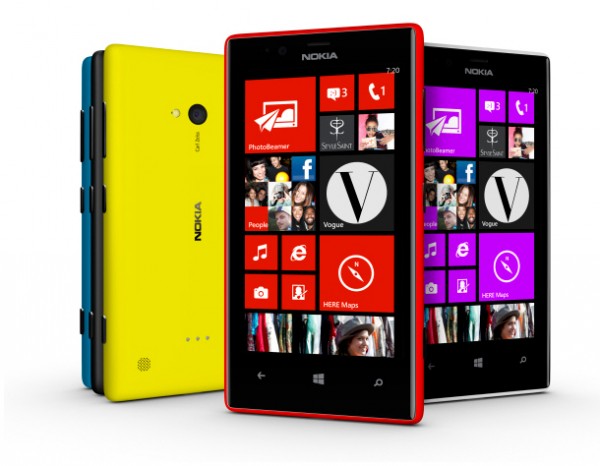 Finnish phone manufacturer Nokia’s latest Window Phone 8 handsets, the mid-range Lumia 720 and the entry-level Lumia 520, will go on sale in the UK from the 1 April, but would-be purchasers can pre-order the devices now.
Finnish phone manufacturer Nokia’s latest Window Phone 8 handsets, the mid-range Lumia 720 and the entry-level Lumia 520, will go on sale in the UK from the 1 April, but would-be purchasers can pre-order the devices now.Contract-free prices will vary slightly depending on the retailer (naturally). Clove will be selling the Lumia 520 for £169.99, while the Lumia 720 is priced at £299.99. Unlocked Mobiles has the Lumia 520 for £159.98 and the Lumia 720 for £294.98. For comparison, in the US the Lumia 520 costs $185 and the Lumia 720 $338, both before taxes.
Both handsets were launched at the Mobile World Congress in Barcelona. The Lumia 520 boasts a 4-inch display, at a resolution of 800 by 480, and is powered by a 1GHz dual-core Snapdragon processor. It comes with 512MB of RAM and 8GB of internal storage.
The 720 has a 4.3-inch display at 800 by 480 with a ClearBlack filter for better outdoors viewing. It has the same specs as its sibling, but boasts a rear 6.7-megapixel camera and a front-facing shooter with a 1.3-megapixel HD wide angle lens for taking better group shots.
When Nokia announced the Lumia 720 it said the smartphone would initially only be available in the Asia Pacific market, so it’s good to see it coming to the UK so swiftly.
-

CCleaner is coming to Android 'soon'
Publié: mars 9, 2013, 10:44am CET par Wayne Williams
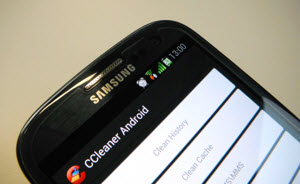 Although there are many free system cleaners available for Windows and Mac OS X, CCleaner is one of the most popular, and for good reason. It’s thorough, trustworthy and very easy to use. It’s among the first programs I always install on a new system.
Although there are many free system cleaners available for Windows and Mac OS X, CCleaner is one of the most popular, and for good reason. It’s thorough, trustworthy and very easy to use. It’s among the first programs I always install on a new system.The good news for Android owners is developer Piriform is working on a new version of its cleanup tool specifically for the mobile platform that will offer one-click cleaning to “help keep your Android devices running like new”.
Unfortunately there’s no word on when it will be available. Piriform says only that the app is currently a “work in progress” and there’s no firm release date yet. However, the Android cleaner is undergoing internal testing at the moment and the developer says “we’re very happy with how it’s looking” so that sounds promising.
Will you be installing it on your Android when it becomes available, or are you of the mindset that it's not really something that's needed on mobile devices?
-

Average UK adult spends 3.9 years of their entire life using a mobile phone. At a guess
Publié: mars 8, 2013, 12:21pm CET par Wayne Williams
 There are surveys covering all manner of topics, many of which have been commissioned purely by companies hoping to grab some headlines for their products and services. Take this new survey from MobileInsurance, some UK mobile phone insurer I’ve never heard of (since I've never insured a phone in my life -- that's partly what my home contents insurance is for).
There are surveys covering all manner of topics, many of which have been commissioned purely by companies hoping to grab some headlines for their products and services. Take this new survey from MobileInsurance, some UK mobile phone insurer I’ve never heard of (since I've never insured a phone in my life -- that's partly what my home contents insurance is for).The firm apparently asked 2,314 mobile phone users aged 18 or over from around the UK just how long they spend on their phones every day. That’s phoning people, sending texts, using apps and playing games. And they received an answer of 90 minutes a day, which works out to 32,850 minutes a year, or 22.8 days, or -- if you want the ultimate figure -- 3.9 years of your entire average adult lifespan. That’s a lot of time spent playing with your phone. And all complete rubbish of course.
For starters, do you know how long you spend on your phone? No. You could guess a figure, which I suspect is what pretty much all of the responders have done. I personally have no idea, at all, how long I spend on my phone on average. Since I also use an iPod touch for notifications, and an iPad for other tasks, it makes it very hard to say exactly how much time I spend looking at all the different screens combined, let alone what the figure is broken down by device. So that estimate of 90 minutes a day might be right, it could be entirely wrong. You don’t need to survey over 2,000 people to get that figure, you could just make it up yourself.
It depends on the day, on your situation, on your age, on your device -- even on your provider. I once spent over an hour just trying to access a website from a place with hardly any signal. I know it's an average figure they're claiming, but I'm not sure I could actually even begin to guess that with any degree of accuracy. It could be anything. 90 minutes, 180 minutes, 30 minutes. No clue.
Jason Brockman, Director of MobileInsurance.co.uk, said: "I was amazed to see how much we use our mobile phones over the course of a year and even our whole adult lifetime. To see that we text, call, browse the net, use apps, take pictures and more for almost 4 years in our lifetime is astounding".
No it isn’t Jason. You do anything for any length of time -- like eating, sleeping, having sex, watching TV -- it all adds up. If you spend five minutes a week looking for lost car keys that alone totals 11 days of your life wasted.
The survey did bring up some marginally more interesting results though. When asked what they most used their phones for, the recipients stated the following:
- Browsing the internet -- 24%
- Sending texts -- 21%
- Making phone calls -- 17%
- Using apps -- 15%
- Emails -- 13%
- Taking pictures -- 6%
- Other -- 4%
If anything I’m surprised that making phone calls rated so highly. I'd have thought apps would be higher too, but it depends on what type of phones the people surveyed actually own.
Do you know how long you spend on your phone on a daily basis, and what do you mostly use it for?
Photo Credit: Adam Radosavljevic/
-

Kindle Paperwhite is my new favorite gadget [Review]
Publié: mars 7, 2013, 3:40pm CET par Wayne Williams
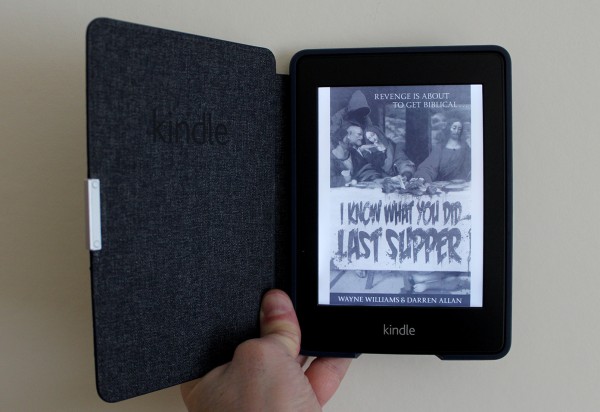 When I wrote Why I Love Kindle back in February I said I was intending to upgrade to a Kindle Paperwhite soon. Three weeks later, timed so I can buy a Kindle copy of my own book (my publisher only supplies free paperbacks), and that’s exactly what I’ve done.
When I wrote Why I Love Kindle back in February I said I was intending to upgrade to a Kindle Paperwhite soon. Three weeks later, timed so I can buy a Kindle copy of my own book (my publisher only supplies free paperbacks), and that’s exactly what I’ve done.The Kindle is one of those very rare devices that you don’t really need to upgrade. New features, an improved screen, touch support – it’s all well and good, but when you’re reading something you’re pretty oblivious to anything other than the words on the page. Or rather the screen. That said, moving to the Paperwhite from a second generation Kindle is a huge leap forward.
The big difference of course is the Paperwhite comes with a frontlit, high-res capacitive touchscreen. A frontlit screen means exactly what it says. It’s lit from the front. So instead of a light shining into your eyes, it shines on the screen. This means you can read the Kindle comfortably at night without the need for a torch or reading light. It also has another benefit. It brightens up the screen, so instead of a grey-ish display you get one that’s white. Paperwhite in fact.
Because it’s touchscreen, there are no actual buttons to worry about, except the on switch at the bottom of the device. Moving around is just a case of touching the left and right sides of the screen to turn pages, and tapping the top of the display to access the menu. If you want to look up a word you just press and hold it for a bit, then let go and the definition pops up. You can share and highlight text or add notes in the same way.
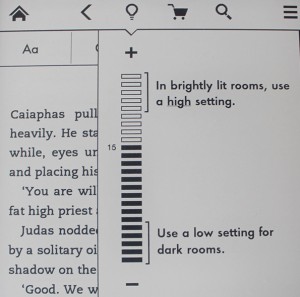 The Paperwhite lets you access books stored on the device or, if you prefer, in the cloud, and the top menu lets you adjust the screen brightness (turn it up for brightly lit rooms, or dim it for darker locations), go shopping for new books on Amazon, and access the options. You can switch between list and cover view, sort your books by creating collections, sync and check for items and launch the experimental browser. The settings screen lets you turn Aeroplane Mode on or off, configure Wi-Fi, and access device and reading options.
The Paperwhite lets you access books stored on the device or, if you prefer, in the cloud, and the top menu lets you adjust the screen brightness (turn it up for brightly lit rooms, or dim it for darker locations), go shopping for new books on Amazon, and access the options. You can switch between list and cover view, sort your books by creating collections, sync and check for items and launch the experimental browser. The settings screen lets you turn Aeroplane Mode on or off, configure Wi-Fi, and access device and reading options.Compared with my second generation Kindle, the Paperwhite is tiny. It’s smaller all round, thinner and lighter but with a slightly taller screen. Of course my old Kindle had a large keyboard on the bottom so that’s part of the reason for the difference in size.
The text is sharper (the PPI has risen to 212 from 169), which combined with the frontlight makes reading more pleasurable. Well depending on what you’re reading of course. You still get the ghosting, as well as the E Ink flicker when the screen refreshes itself but it’s faster and so less noticeable.
A friend who owns a Paperwhite said she struggled a bit with the device because she found it a little awkward to hold one handed without accidentally touching the screen and calling up menus or flipping pages. I haven’t experienced that problem, but that might be just how I hold it, or down to the fact I’ve shelled out on a case that makes the device easier to grasp.
Although Amazon was having a sale on third-party cases when I purchased my Paperwhite, I ignored those in favor of buying Amazon’s official Leather Cover in Ink Blue. This only fits the Kindle Paperwhite and automatically turns the e-reader on when you open it (so you need never use the one physical button if you don’t want to). A lot like the Smart Case on my Apple iPad.
Just one more chapter...
There are two features new to me that I quite like. Time to Read is very clever and analyses the speed you read at and gives you an estimate of how long it will take you to read the next chapter, or the entire book. If you’re wondering if you have enough time to read the next chapter before turning in for the night, it can tell you with reasonable accuracy.
The other feature is X-Ray. This shows you information about the important characters in the book or on the page. It requires the book you’re reading to have this feature enabled, and a lot of books won’t (my new novel doesn’t for example). That said, although I’ve tried X-Ray out and think it’s quite clever, I don’t imagine I’ll be using it much, if at all.
I’ve only had my Paperwhite for a short while, but already I’m loving it. I’ll be keeping my second generation Kindle because I like the physical keyboard and will use it for making notes on my next novel, but for day-to-day reading, I’ll be permanently attached to the new device, and as I do a lot of reading at night, the combination of the frontlight and Time to Read means I’m already powering through my current choice of book.
If you own a non-Paperwhite Kindle, or another eBook reader, do you have any plans to upgrade, or are you happy to stick with what you’ve got? Comments below please.
If you’d like to buy a copy of my novel -- I Know What You Did Last Supper -- I believe Amazon might just have it in stock. You can also read an extract here.
-

Google Play gift cards now available in UK supermarkets
Publié: mars 6, 2013, 9:28am CET par Wayne Williams
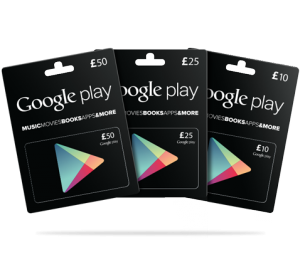 Apple has offered its iTunes gift cards through various UK high street retailers and supermarkets for years now. It’s taken a long while, but Google is finally following suit.
Apple has offered its iTunes gift cards through various UK high street retailers and supermarkets for years now. It’s taken a long while, but Google is finally following suit.Google Play gift cards, in £10, £25 and £50 denominations will be available from today in Tesco and Morrisons stores. The roll out is happening slowly so they might take a few weeks to reach every location.
The gift cards can be used to purchase apps, music, books, and movies -- but not app subscriptions, magazine subscriptions, or hardware or accessories -- and they can be redeemed on the Google Play site, or directly on your Android device.
Google Play gift cards originally launched in the US last summer where they are available to purchase through the likes of Target, Walmart, Staples, and RadioShack.
-

BBC bringing iPlayer to Windows Phone 'soon'
Publié: mars 5, 2013, 2:16pm CET par Wayne Williams
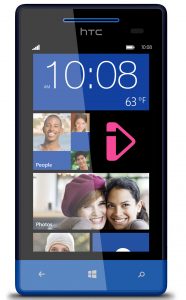 The BBC’s excellent on-demand and catchup TV service iPlayer is available for both iOS and Android devices, although owners of phones and tablets running Google’s mobile OS remain slightly short-changed when it comes to features compared to their Apple OS counterparts.
The BBC’s excellent on-demand and catchup TV service iPlayer is available for both iOS and Android devices, although owners of phones and tablets running Google’s mobile OS remain slightly short-changed when it comes to features compared to their Apple OS counterparts.Windows Phone users must feel perpetually short-changed at the moment I’m sure, but they too will soon be able to get iPlayer. There’s just one catch. Instead of releasing a dedicated app for Microsoft’s mobile OS, the BBC will be rolling out a shortcut application that will give users with a Windows Phone 7.5 or Windows Phone 8 handset access to the BBC iPlayer website via a live tile. According to Cyrus Saihan, Head of Business Development, BBC Future Media, "This shortcut will wrap the BBC iPlayer mobile website together with our media player.
Hopefully these and other developments will help to expand our online reach further. Our latest figures show that over 650 different device types can access BBC iPlayer". A shortcut application is hardly the same as a dedicated app, but it’s the best that Windows Phone owners can hope for. The BBC says it has no plans to create a special version of iPlayer for Microsoft’s platform.
-

Green Throttle turns the Kindle Fire HD into a games console, Samsung Galaxy S III next
Publié: mars 5, 2013, 1:32pm CET par Wayne Williams
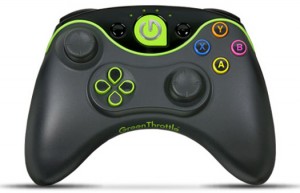 This year is certainly going to be a big one for games consoles, with a new PlayStation and a new Xbox (rumored) to be arriving before Christmas. But it’s Android-based gaming systems that’s the big trend at the moment, with the likes of OUYA and GameStick grabbing their fair share of the headlines.
This year is certainly going to be a big one for games consoles, with a new PlayStation and a new Xbox (rumored) to be arriving before Christmas. But it’s Android-based gaming systems that’s the big trend at the moment, with the likes of OUYA and GameStick grabbing their fair share of the headlines.Green Throttle is another Android games system, but it’s one that doesn’t require you to make space for a dedicated console under the TV. Instead you just need to buy one or more Green Throttle Atlas controllers, download the free Green Throttle Arena app from the Amazon Appstore, and hook up your Android tablet to a TV using a micro HDMI cable.
At the moment the system only works with Amazon’s Kindle Fire HD, but support for additional devices is coming, and not just tablets. One of the next devices to be supported will be the Samsung Galaxy S III. Provided your device is capable of displaying 1080p at 60fps, it should, in time, be compatible with Green Throttle.
The controllers connect to your tablet via Bluetooth, and cost $39.95 each, or $89.99 for a two player bundle which also includes a micro HDMI-to-HDMI cable and a micro USB charger. The setup supports up to four controllers, so you can enjoy multi-player games with friends.
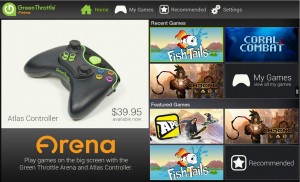
At the moment there aren’t many games available for Green Throttle, but the ones currently on offer are free, and of course there are more in development.
Does Green Throttle sound like something of interest, or are you more excited by the likes of OUYA, or Microsoft and Sony’s new consoles? Comments below.
-

Google adds a new Settings app to Android devices
Publié: février 27, 2013, 1:36pm CET par Wayne Williams
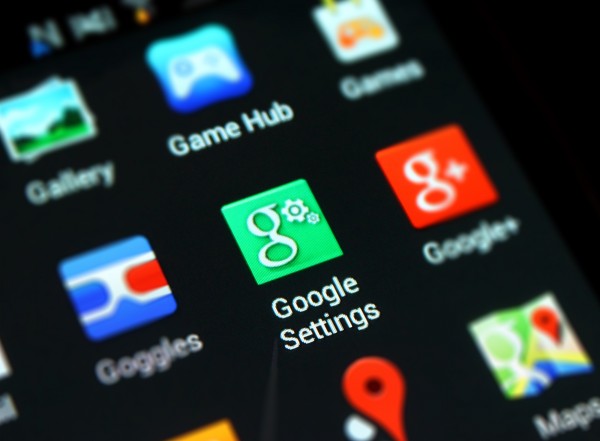 If you have an Android phone, check your apps -- you’ll likely a have a new one lurking there. The green Google Settings app, added today, gives users quick access to various settings for services such as Google+, Apps with Google+ Sign-in, Maps & Latitude, Location, Search, and Ads. The options you see will depend on your device and what’s enabled.
If you have an Android phone, check your apps -- you’ll likely a have a new one lurking there. The green Google Settings app, added today, gives users quick access to various settings for services such as Google+, Apps with Google+ Sign-in, Maps & Latitude, Location, Search, and Ads. The options you see will depend on your device and what’s enabled.The biggest, most noteworthy feature here is of course Google+ Sign-in which lets you to use your Google ID as a universal sign-in for third-party apps and services. My colleague Joe Wilcox discussed the possibilities of this following Google’s announcement of its new authentication system yesterday.
If you want to try out this new feature, the best way is to install one of the supported apps. Shazam is a good one. Once installed, you’ll be presented with a red Google+ Sign-in button, hit this and specify who you want to share your music discoveries with on Google’s social site.
Go back to the Google Settings app and tap Apps with Google+ Sign-in. This will show you Shazam, and give you the option to disconnect it, and also delete its activities on Google.
The Google+ option in the app will let you turn Notifications, Messenger and Hangouts on or off. You can choose if you want Google+ connections added to your Android ones, and let Google make suggestions based on the people you communicate with most on your phone.
You can also turn Instant Upload on or off and choose which accounts to sync.
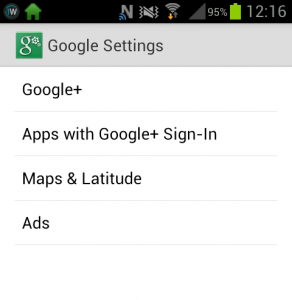 Maps & Latitude lets you manage location reporting and sharing, and control which friends can see your current position. You can also enable location history, and turn automatic check-ins on or off.
Maps & Latitude lets you manage location reporting and sharing, and control which friends can see your current position. You can also enable location history, and turn automatic check-ins on or off.The Ads section let you choose whether or not you want ads from Google and AdMob personalized on your device. I personally don’t but you may not be bothered.
While most of the settings on offer can be accessed through their respective apps, this new offering provides a simple way to access all of the important Google options in the one place.
-

Photoshop Touch now available for smartphones
Publié: février 27, 2013, 12:36pm CET par Wayne Williams
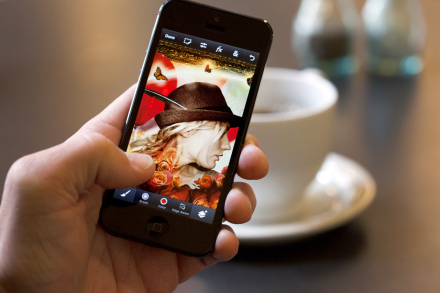 Adobe’s Photoshop Touch app for tablets is a great photo editing tool and now it’s available for handsets running iOS and Android, so you can polish up your snaps before sharing them online, or do something even more creative.
Adobe’s Photoshop Touch app for tablets is a great photo editing tool and now it’s available for handsets running iOS and Android, so you can polish up your snaps before sharing them online, or do something even more creative.The app is packed with powerful features such as layers, selection tools, adjustments and filters, and there’s even a clever Camera Fill function which will let you use your device’s camera to fill an area on a layer. The app can handle images up to 12 megapixels in size and you get 2GB of free Adobe Creative Cloud space to store your pictures in.
The beauty of Creative Cloud is it will allow you to start working on a photo on one device, such as a tablet, switch to your phone and
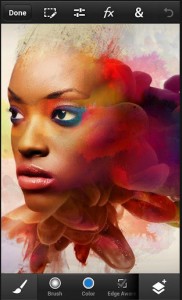 continue there, before firing up Photoshop on your PC or Mac and finishing things off. Of course you’ll need to own separate copies of Photoshop for the various different devices.
continue there, before firing up Photoshop on your PC or Mac and finishing things off. Of course you’ll need to own separate copies of Photoshop for the various different devices.Speaking about the new app, Winston Hendrickson, Adobe's vice-president products, creative and media solutions said: “Mobile phones are increasingly becoming the primary tool for people to take and edit photos. Adobe is dedicated to serving our customers’ evolving creative workflow and we heard, loud and clear, that Photoshop fans wanted some core Adobe imaging magic on their smartphones.”
Photoshop Touch is available to download from the App Store or Google Play now, priced at a pretty reasonable $4.99.
-

Ubuntu Touch developer preview coming to more devices soon
Publié: février 27, 2013, 9:52am CET par Wayne Williams
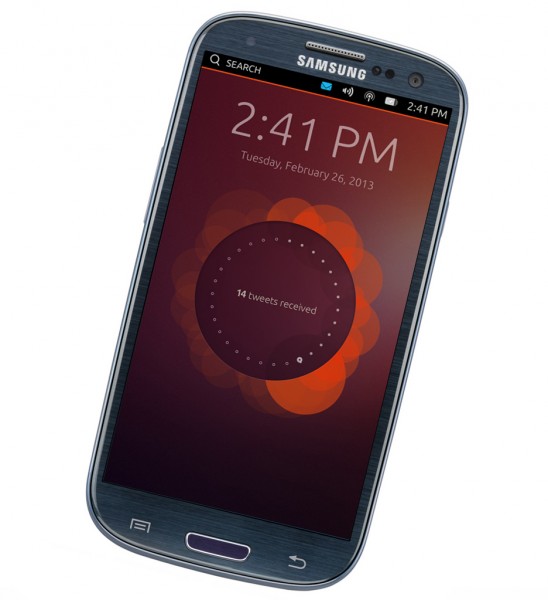 My colleague Mihaita Bamburic posted his first impressions on the preview version of Ubuntu Touch yesterday, and now Canonical has announced its intention to bring the early version of the mobile operating system to a further 20+ devices.
My colleague Mihaita Bamburic posted his first impressions on the preview version of Ubuntu Touch yesterday, and now Canonical has announced its intention to bring the early version of the mobile operating system to a further 20+ devices.Originally only available to install on the Galaxy Nexus, Nexus 4, Nexus 7, and Nexus 10, the developer preview gives installers an early start with Ubuntu Touch, but it’s currently a taster, more than an actual, fully usable operating system.
An update on the Ubuntu Wiki reveals a long list of devices that the developer preview will soon be available for, and includes the Motorola XOOM, Galaxy Nexus (codenamed toro and toroplus), Sony Xperia S and T, Samsung Galaxy S III (international, Verizon Wireless, and AT&T), Huawei Ascend G300, Samsung Galaxy S (GT-I9000), Samsung Galaxy S SCL (GT-I90003), Samsung Galaxy Note, Samsung Galaxy Note II, Samsung Galaxy S II (international), HTC One X, HTC One XL, HTC One X+ (multiple versions), Asus Transformer Infinity, LG Optimus 4x HD, Nexus S, Nexus One, Samsung Galaxy Tab 10.1 Wi-Fi, and the Asus Transformer Pad.
Unlocking and install instructions, as well as the code/image are already available for some devices in the list, including the Sony Xperia S and T, and Huawei Ascend G300.
It’s good to see the OS being made compatible with such a wide range of devices, and surprising too, as I wouldn’t have expected it to run all that well on older hardware like the Nexus One. Of course making it available for aging devices is a good thing as enthusiasts will be more willing to install the OS on an old phone in a drawer than on their current model.
Do you plan to take the developer preview for a spin, or like me are you waiting for a more fully operational version? Leave your comments below.
-

Apple offers refunds to parents whose children have made in-app purchases without permission
Publié: février 26, 2013, 2:34pm CET par Wayne Williams
 In-app purchases are a lucrative revenue stream for both Apple and the developers who embrace it. It provides a way to try a game and then unlock the full thing, or gain access to additional features. In Temple Run 2, for example, you can use real money to buy coins and gems to use on unlocking new characters and abilities.
In-app purchases are a lucrative revenue stream for both Apple and the developers who embrace it. It provides a way to try a game and then unlock the full thing, or gain access to additional features. In Temple Run 2, for example, you can use real money to buy coins and gems to use on unlocking new characters and abilities.The problem is a lot of game makers offer this facility in their apps, and until Apple made a change to its purchasing system in iOS 4.3, it was possible for children to spend money on in-app purchases without their parents knowledge. This, inevitably, lead to a lawsuit against Apple, with the technology giant accused of failing to adequately publicize the existence of the feature in certain App Store games aimed at children.
In response to the lawsuit -- which was originally brought by a Californian man in 2011 after his daughter racked up $200 of charges without his permission -- Apple is now proposing to pay compensation to parents who have lost money in this way.
At the moment this offer only extends to US parents and guardians, and will need to be signed off by a judge on Friday before it can be actioned.
If agreed, American App Store shoppers will receive an email offering them a minimum of $5 compensation in iTunes credit or cash, provided they can show they have had a child spend at least $30 on in-app purchases without permission (and assuming the parents haven’t already complained and been refunded of course). The key catch is the child will need to have spent the money in the fifteen minute window originally allowed by Apple for additional purchases made after the password was entered. If your child knows -- and used -- your password to go on their spending spree, it’s tough luck.
It is thought Apple will need to contact around 23 million users, alerting them that they may be entitled to compensation. No word at the moment if or when this offer will be extended outside of the US.
Photo Credit: Serhiy Kobyakov /Shutterstock
-

Up yours Apple! Samsung to launch Galaxy S IV in the US next month
Publié: février 25, 2013, 11:12am CET par Wayne Williams
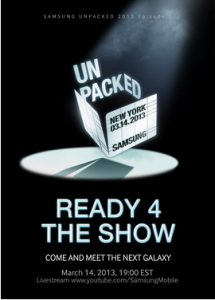 Samsung might have received a $1.05 billion bloody nose in its battle against Apple last year, but the South Korean giant is coming back fighting, by launching the next version of its flagship smartphone on US soil next month. The first such launch in three years.
Samsung might have received a $1.05 billion bloody nose in its battle against Apple last year, but the South Korean giant is coming back fighting, by launching the next version of its flagship smartphone on US soil next month. The first such launch in three years.Confirmed today at the Mobile World Congress in Barcelona, and in a tweet, Samsung will be unveiling the Galaxy S IV in New York as part of the Samsung Unpacked event on March 14.
According to the South Korean Edaily news website, JK Shin Samsung Electronics' mobile division chief said: "We introduced the Galaxy S III in London last year, and this time we changed the venue (to New York)... as we were bombarded with requests from U.S. mobile carriers to unveil the Galaxy S IV in the country".
The new flagship device is widely expected to offer a higher-resolution display, Exynos 5 8-core processor, and much better front and rear cameras than its predecessor. One thing we do know for certain is it will be rocking the latest version of Jelly Bean 4.2.2.
Samsung Electronics unveiled the original Galaxy S at the CTIA mobile trade show in the US in 2010, but the S II and S III were launched in Spain (2011) and the UK (2012) respectively.
Are you excited by the announcement, and do you plan to buy the new device when it becomes available?
-

Nokia announces two new Lumia smartphones
Publié: février 25, 2013, 10:07am CET par Wayne Williams
Nokia has just confirmed two new Lumia smartphones at the Mobile World Congress in Barcelona. The entry-level Nokia Lumia 520 will be priced at $185 (before taxes) off contract, while the mid-range Lumia 720 will cost $338 (also before taxes).
Nokia now has five Windows Phone 8 devices, covering all price points and making it easier for would-be customers to find a model that suits their requirements and budget.
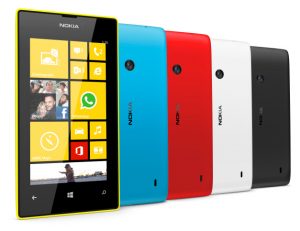 The Lumia 520 boasts a 4-inch display, at a resolution of 800 by 480, and is powered by a 1GHz dual-core Snapdragon processor. It comes with 512MB of RAM and 8GB of internal storage. A Micro SD card slot will allow owners to boost this by a further 64GB, plus users get the standard 7GB of free online SkyDrive storage. The 520 also sports a 5-megapixel rear camera capable of recording 720p HD video. The device comes in the usual range of bright colors - yellow, cyan, red, white and black.
The Lumia 520 boasts a 4-inch display, at a resolution of 800 by 480, and is powered by a 1GHz dual-core Snapdragon processor. It comes with 512MB of RAM and 8GB of internal storage. A Micro SD card slot will allow owners to boost this by a further 64GB, plus users get the standard 7GB of free online SkyDrive storage. The 520 also sports a 5-megapixel rear camera capable of recording 720p HD video. The device comes in the usual range of bright colors - yellow, cyan, red, white and black.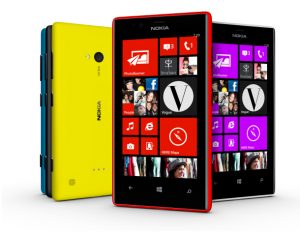 The mid-range Lumia 720 has a 4.3-inch display at 800 by 480 with a ClearBlack filter offering better outdoors viewing. It has a dual-core 1GHz Snapdragon CPU, 512MB of RAM, 8GB of internal storage and a microSD card slot. The biggest difference between this model and the 520 is in the photography department. The rear 6.7-megapixel camera has a f1.9 Carl Zeiss lens designed to let in more light, while the front-facing camera has a 1.3-megapixel HD wide angle lens which will allow self-shooters to pack more friends into the shot.
The mid-range Lumia 720 has a 4.3-inch display at 800 by 480 with a ClearBlack filter offering better outdoors viewing. It has a dual-core 1GHz Snapdragon CPU, 512MB of RAM, 8GB of internal storage and a microSD card slot. The biggest difference between this model and the 520 is in the photography department. The rear 6.7-megapixel camera has a f1.9 Carl Zeiss lens designed to let in more light, while the front-facing camera has a 1.3-megapixel HD wide angle lens which will allow self-shooters to pack more friends into the shot.Nokia is aiming the Lumia 720 at younger, trendier users and so includes a digital lens feature called Glam Me which can be used to whiten teeth, enlarge eyes, and banish skin imperfections.
The Lumia 520 will be available to purchase in the US, via T-Mobile, in the next few months. The Lumia 720 will initially be available through China Mobile in the Asia Pacific market. No word on when or if it will reach the US or Europe.
-

BBC updates its iPlayer app -- background streaming via AirPlay now enabled
Publié: février 22, 2013, 11:54am CET par Wayne Williams
 The BBC’s iPlayer app is available for both iOS and Android, but owners of Apple devices definitely get the better deal with additional features, such as the ability to download shows to their iPhones or iPads for offline viewing.
The BBC’s iPlayer app is available for both iOS and Android, but owners of Apple devices definitely get the better deal with additional features, such as the ability to download shows to their iPhones or iPads for offline viewing.The latest update from the BBC widens the gap between the app siblings further by introducing improved AirPlay support. Owners of iOS devices who also have Apple TV will now be able to beam a show from the app to the big screen, and then background iPlayer, and use their phone or tablet for something else while the show continues to play.
In addition, the new version of the app fixes various minor problems and glitches, improves playback quality, and ensures downloads are more reliable.You can grab the latest version of iPlayer from the App Store now.
-

How much would you pay to watch YouTube in Windows 8? $999.99?
Publié: février 21, 2013, 2:16pm CET par Wayne Williams
 A couple of days ago I described the Windows Store as being like a Bangkok night market, filled with nothing but knockoffs. You can’t get an official app for Facebook, Twitter, or Gmail on there, but you can get lots of third-party alternatives, many of which are of dubious quality.
A couple of days ago I described the Windows Store as being like a Bangkok night market, filled with nothing but knockoffs. You can’t get an official app for Facebook, Twitter, or Gmail on there, but you can get lots of third-party alternatives, many of which are of dubious quality.One of the biggest names missing from the Windows Store is YouTube. Google says it has no plans to create an app for Windows 8, but fortunately an enterprising publisher called T.O.K. has got you covered with his exciting sounding “Youtube Player Deluxe”, which really must be deluxe given its $999.99 asking price.
So what do you get for your thousand dollars? Well I haven’t actually purchased it myself, but according to the description, the app will let you "watch a stream, share videos and access your personal content from Youtube. Everything included in the great user interface of Windows 8".
The full list of features reads:
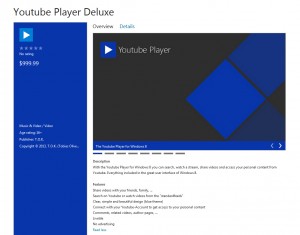
- Share videos with your friends, family ...
- Search on Youtube or watch videos from the "standardfeeds"
- Clear, simple and beautiful design (blue theme)
- Connect with your Youtube Account to get access to your personal content
- Comments, related videos, author-pages...
- Livetile
- No advertising
The absence of adverts will be very pleasing to prospective cash-rich purchasers I’m sure.
The website of the publisher gives no clue as to the sky-high price, (although it does say the app is currently broken and an update is planned), so it’s possible it’s just a mistake. It’ll be interesting to know if the developer manages to sell any apps at that price. After all, eight people purchased the "I am Rich" iOS app (described by its developers as "a work of art with no hidden function at all") for $999.99 back in 2008, before Apple had a chance to remove it from the store.
Photo Credit: ARENA Creative/Shutterstock
-

Win a chance to buy a pair of Google Glass specs
Publié: février 20, 2013, 2:57pm CET par Wayne Williams
 Select developers already have access to Google’s futuristic glasses, but now the search giant has launched a competition giving ordinary American citizens the chance to buy a pair before they’re launched, and become a "Glass Explorer" (as Google terms those "bold, creative individuals who want to help shape the technology").
Select developers already have access to Google’s futuristic glasses, but now the search giant has launched a competition giving ordinary American citizens the chance to buy a pair before they’re launched, and become a "Glass Explorer" (as Google terms those "bold, creative individuals who want to help shape the technology").To be in with a shot you need to tell Google, via Google+ or Twitter, what you would do with the glasses if you had a pair. The more creative your answer, the more likely the chance of you actually being selected. "Wear them on the subway and get mugged" probably won’t win.
Your answer has to be less than 50 words and tagged with #ifihadglass but you’re allowed to include up to five photos or a 15 second video clip, and can submit up to three entries. You will need to follow Google on Google+ (+ProjectGlass) or Twitter (@projectglass) so that you can be contacted if you’re judged worthy enough. Entries must be received by February 27.
Google will select the best 8,000 applications and invite those people to become Glass Explorers. The chosen will then have the opportunity to purchase a Glass device at a cost of $1,500 (plus taxes) and pick-up their purchases from New York, Los Angeles, or San Francisco. If you don’t live near any of those cities you’ll need to pay for your own travel, so being on the cutting edge could get pretty expensive.
If you've not been put off yet, go here to get all of the details on what is involved.
-

BBC Sport launches a dedicated Android app
Publié: février 20, 2013, 10:30am CET par Wayne Williams
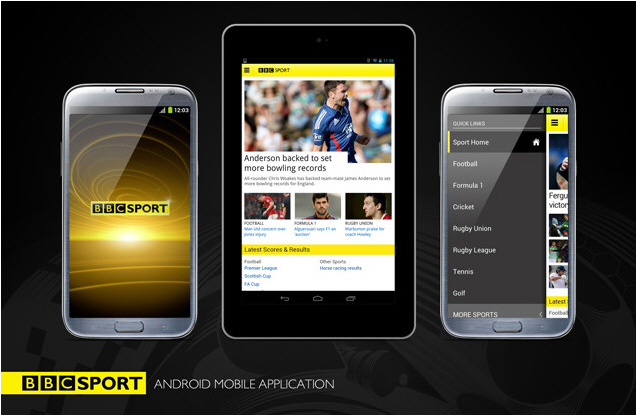
When the BBC launched a dedicated sports app for iOS devices a month ago, it said it was working on an Android version and expected to release it in a matter of weeks. Well the good news for sport-loving Android owners is that day has finally arrived.
The new BBC Sport app is compatible with devices running Android 2.2 (Froyo) and above, and has been optimized for screens up to 7-inches so should display perfectly on devices such as Google’s Nexus 7.
Like the iOS version, the app displays top stories from the BBC Sport website, and offers live and on demand video and audio, as well as live text commentaries of major sporting events. There are pages for football (soccer for American readers), formula 1, cricket, rugby union, rugby league, tennis, and golf.
The football coverage is naturally the most detailed, with live scores, match statistics, text commentaries, a season’s worth of fixtures, tables, and pages for teams and leagues.
According to Keith Mitchell, Technical Lead for BBC Sport’s mobile services, planned future improvements to the app include "customizable quick links for the main navigation, team customization and home screen widgets".
The app is available from Google Play now and will also be made available through the Amazon App Store -- good news for Kindle Fire HD owners.
-

Winners of the UK's 4G auction announced
Publié: février 20, 2013, 9:58am CET par Wayne Williams
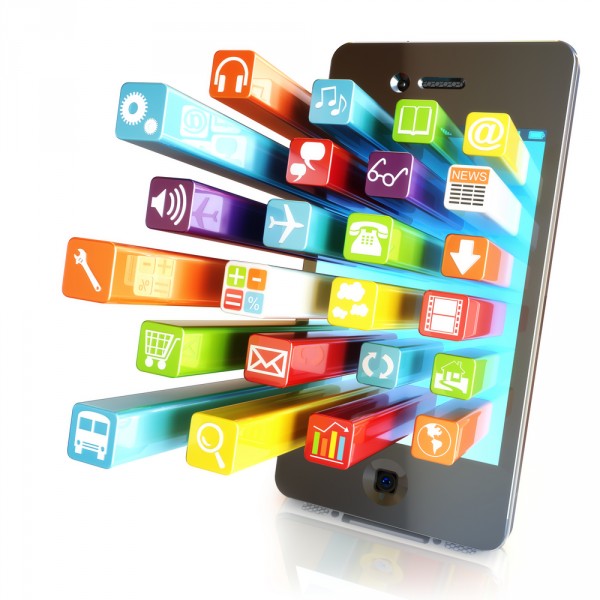 UK Telecoms regulator Ofcom has announced the winners of the auctions for 4G spectrum on the 800MHz and 2.6GHz bands, and it’s a list with no surprises. After more than 50 rounds of bidding the winners are EE, Hutchison 3G UK, Niche Spectrum Ventures (a subsidiary of BT), Telefónica, and Vodafone.
UK Telecoms regulator Ofcom has announced the winners of the auctions for 4G spectrum on the 800MHz and 2.6GHz bands, and it’s a list with no surprises. After more than 50 rounds of bidding the winners are EE, Hutchison 3G UK, Niche Spectrum Ventures (a subsidiary of BT), Telefónica, and Vodafone.The Office for Budget Responsibility had expected the auction to raise £3.5bn but in the end it actually raised considerably less -- £2.34bn. A fraction of the £22bn the 3G spectrum auction brought in for the Treasury in 2000.
The two bands, which cover 250MHz of spectrum in total, or the equivalent of two-thirds of the radio frequencies currently used by wireless devices, will give 4G networks widespread coverage and enough capacity to deal with the demand in cities.
The lower-frequency 800 MHz band, which is ideal for widespread mobile coverage, comes from the so called digital dividend that was made available when analogue terrestrial TV was finally switched off on 24 October 2012. The higher-frequency 2.6 GHz band delivers the capacity needed for faster speeds.
Telefónica has a contractual obligation attached to one of the 800 MHz lots, and as a result must deliver a mobile broadband service for indoor reception to at least 98 percent of the UK population by the end of 2017.
Making the announcement, Ed Richards, Ofcom Chief Executive, said:
This is a positive outcome for competition in the UK, which will lead to faster and more widespread mobile broadband, and substantial benefits for consumers and businesses across the country. We are confident that the UK will be among the most competitive markets in the world for 4G services.
4G coverage will extend far beyond that of existing 3G services, covering 98 percent of the UK population indoors -- and even more when outdoors -- which is good news for parts of the country currently underserved by mobile broadband.
We also want consumers to be well informed about 4G, so we will be conducting research at the end of this year to show who is deploying services, in which areas and at what speeds. This will help consumers and businesses to choose their most suitable provider.
EE, formerly Everything Everywhere, which was created by the merger of the T-Mobile and Orange businesses in 2010, already offers a 4G service (the UK’s first) on another band. At the end of January it announced it would be expanding its coverage to reach around 45 percent of the UK population.
Photo credit: Digital Storm/Shutterstock
-

StackMob launches new Enterprise Marketplace
Publié: février 19, 2013, 7:00pm CET par Wayne Williams
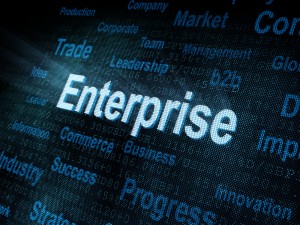 According to Gartner, by 2017 around 25 percent of enterprises will have their own app stores for managing home grown and corporate-sanctioned apps on PCs and mobile devices. Bring Your Own Application (BYOA) is becoming almost as important as Bring Your Own Device (BYOD) in some corporate workplaces.
According to Gartner, by 2017 around 25 percent of enterprises will have their own app stores for managing home grown and corporate-sanctioned apps on PCs and mobile devices. Bring Your Own Application (BYOA) is becoming almost as important as Bring Your Own Device (BYOD) in some corporate workplaces.StackMob, a cloud-based mobile platform provider, has today launched a new Enterprise Marketplace for third-party services, aimed at offering a simple and effective way for larger organizations to build and deploy their own full-featured mobile applications.
The new one-stop shop offers enterprise-class modules, APIs, and professional services from prominent charter collaborators in the enterprise space, including ADP, AT&T, Box, Braintree, GoodData, Mashery, New Relic and Rackspace and Salesforce. Firms in need of mobile app development services will now be able to easily integrate their choice of third-party apps into StackMob’s BaaS (Backend as a Service) mobile development platform.
"
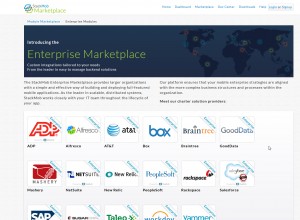 Enterprises are approaching StackMob looking for ways to unlock innovation inside their company," Ty Amell, CEO of StackMob said, announcing the new initiative. "StackMob provides consistency and structure that supports a scalable mobile strategy."
Enterprises are approaching StackMob looking for ways to unlock innovation inside their company," Ty Amell, CEO of StackMob said, announcing the new initiative. "StackMob provides consistency and structure that supports a scalable mobile strategy."AT&T will be among the first to offer its APIs to developers within the StackMob Enterprise Marketplace. "We’ve opened up our APIs to the developer community," Carolyn Billings, Associate Vice President of Product Marketing Management at AT&T explains, "and now we’re looking forward to working with StackMob and their customers to enable richer mobile experiences for enterprise users".
Photo Credit: Maksim Kabakou/Shutterstock
-

The Windows Store is like a Bangkok night market -- full of cheap knockoffs
Publié: février 19, 2013, 5:08pm CET par Wayne Williams
 When Windows 8 launched on October 26 2012, the Windows Store had an estimated 9,000 apps available to purchase or download. Today, according to the excellent MetroStore Scanner, that figure has risen to 43,083 worldwide, of which 28,904 are available in the US store, and 26,385 in the UK one.
When Windows 8 launched on October 26 2012, the Windows Store had an estimated 9,000 apps available to purchase or download. Today, according to the excellent MetroStore Scanner, that figure has risen to 43,083 worldwide, of which 28,904 are available in the US store, and 26,385 in the UK one.The biggest problem with the Windows Store is not the overall number of apps -- in four months it’s seen reasonable growth although the number of new weekly additions has slowed -- the issue is more with quality. While there’s no shortage of third-party apps, many of which are very good, you can’t help but notice how many big names are absent.
There’s no sign of official apps for Facebook, Twitter, LinkedIn, YouTube, Gmail, Google Maps, Pandora, Spotify, Instagram, Firefox, Groupon, BBC News, or iPlayer… the list goes on and on. The absences aren’t immediately apparent because the third-party developers are doing a good job of making their products look official by using the relevant logos and designs, but dig deeper and you’ll see the Windows Store is packed with cheap fakes.
There are several excuses why genuine versions of important apps aren’t available in the store. For starters not all of them need to be. You can access the services on the web, and -- for Windows RT/Windows 8 Pro tablets and Windows Phone devices -- in mobile-friendly format. Although that argument could be used for iPad and Android platforms, and they both have apps for all the major services.
Email and social accounts can be accessed through the built-in Windows 8 People app of course, but it’s far from ideal and lacks the features you’d get in an app dedicated to a particular service.
"It’s still early days for the new OS" is another reasonable argument for the lack of official apps, and it’s true, although after four months, that excuse is beginning to wear paper thin. After all this is Microsoft Windows we’re talking about here. It’s hardly a small, unknown platform and we’ve all known about the Windows Store since September 2011. The biggest problem is a lot of companies, like the BBC, Google and Facebook aren’t dragging their heels when it comes to developing apps for Windows 8 and RT (or Windows Phone 8 for that matter) they simply have "no plans" to do so. Instead they are focusing on iOS and Android. Proven ecosystems.
It’s often the case that developers will produce an app for iOS first and then follow it up with one for Android (Google’s mobile platform is harder to develop for because of OS fragmentation and the sheer variety of screen shapes and sizes to cater for). Occasionally bigger developers will release apps for both platforms simultaneously, and sometimes for Android first. Windows is a third platform, and one which a lot of developers simply see no pressing need to even acknowledge at the moment. Or indeed ever.
While a Firefox app is in development, the majority of the absent apps I listed previously just aren’t likely to appear, unless Surface and the other Windows RT and Windows 8 Pro powered tablets really take off.
And let’s not forget to mention that some of the official apps which have appeared on Windows 8 -- Dropbox in particular -- are so poor you kind of wish they hadn’t been developed in the first place anyway.
So what’s the solution to the apps problem? It’s simple. Windows 8 needs to perform. Microsoft needs to sell a lot of copies (not just licences), shift a lot of tablets, and prove that the people using its products are also using apps, not just bypassing the Start screen on their way to the desktop. The company has to show the demand is there, it has to convince developers that they need to develop for the OS. It has make Windows 8 a viable app platform.
At the moment I can’t see that happening. Surface Pro is reportedly selling well, but it needs to maintain and grow that momentum, because it’s tablet and phone sales -- and only tablet and phone sales -- which will drive app downloads and ultimately the demand.
If you’re a Windows 8 user what do you think about the lack of official apps? Does it concern you, or have you found enough decent third-party replacements? Leave your comments below.
Photo Credit: Gwoeii/Shutterstock
-

Why I love Kindle
Publié: février 14, 2013, 6:16pm CET par Wayne Williams
 I had a nice surprise Valentine’s Day gift delivered to my door this morning -- a box of ten copies of my new novel (I Know What You Did Last Supper) courtesy of my publisher and fresh off the press. It seemed weird holding the book. Not just because it’s my first novel (co-authored with a friend), but because I haven’t held an actual book for maybe two years now.
I had a nice surprise Valentine’s Day gift delivered to my door this morning -- a box of ten copies of my new novel (I Know What You Did Last Supper) courtesy of my publisher and fresh off the press. It seemed weird holding the book. Not just because it’s my first novel (co-authored with a friend), but because I haven’t held an actual book for maybe two years now.When the Kindle first came out, I resisted it. I’ve loved books since I was child, and couldn’t ever imagine switching to an ebook reader. But then I was given the device as a Christmas present in 2009 and despite all my reservations fell in love with it almost immediately.
Despite my passion for technology I was concerned that I wouldn’t enjoy reading a book on the Kindle as much as reading a real, proper, made-of-paper novel, but it turns out the exact opposite is true. You forget, once you’ve gotten used to how the E Ink display flickers when you "turn" pages, that you’re reading on an alien, electronic device, because your mind concentrates on the words, not the way they’re being delivered. On the message, not the medium.
And there are so many benefits to reading on the Kindle. It’s lightweight yet can store a ridiculous number of books. Big, fat novels which I previously kept putting off reading in favor of smaller, less chunky alternatives, seem less daunting on the Kindle. They don’t take any less time to read, but the length of the book isn’t such a factor when deciding which one to tackle next.
Ebooks are often cheaper too. My novel, which is available in printed form for £7.19 in the UK (as an example), costs just £4.49 in Kindle format ($7.24 in the US). And when you buy a digital book it’s in your hands, on your device, ready to read immediately.
Kindle apps, for devices like my PC, iPad and Android smartphone, also allow me to switch devices but carry on reading where I left off (thanks to Amazon’s Whispersync technology), which is fantastic. Although I still prefer reading on a glare-free E Ink screen where possible.
Another benefit I personally found with my Kindle, which is a second generation model with a keyboard, was that I am able to stick early drafts of my novel on there and read it like a regular book, but also add notes. Previously I’d have had to have printed it out. Numerous times.
Since making the switch to Kindle I’ve persuaded five once die-hard traditional book readers to give it a try, and they’re all now smitten with the device too. And, perhaps most interestingly, all of them say they’re reading more now than ever, which is great news for authors like myself.
Although there are lots of other ebook readers around -- the Nook and the Kobo for instance -- I love my Kindle and see no reason to switch, although I will be trading up to a Kindle Paperwhite very soon, and passing on my beloved old device to another skeptical friend.
So that’s why I love the Kindle. Are you an ebook devotee like me? If not, what’s holding you back and do you think you’ll ever make the switch?
-

Cloud aggregator KiteDesk exits beta, adds iOS app
Publié: février 14, 2013, 1:32pm CET par Wayne Williams
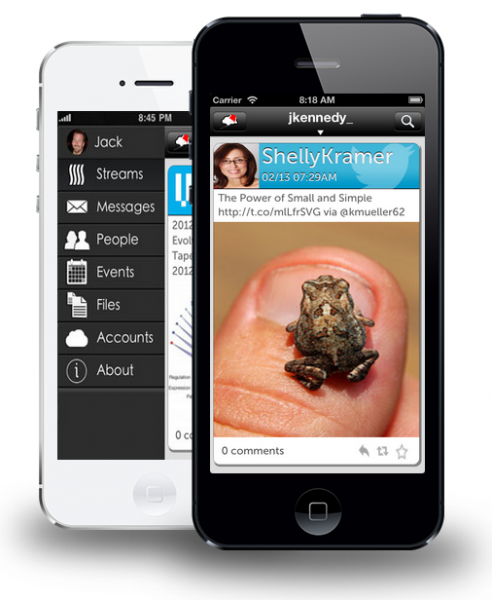 The vast majority of us use multiple cloud services for email, social media, and file storage, which means having to regularly switch between different websites or apps to access our data. KiteDesk aims to solve that problem by aggregating information from all of the popular cloud services into a single application.
The vast majority of us use multiple cloud services for email, social media, and file storage, which means having to regularly switch between different websites or apps to access our data. KiteDesk aims to solve that problem by aggregating information from all of the popular cloud services into a single application.Aimed at busy consumers and professionals, the service presents email messages, social media posts, contacts, calendar events, and files from the likes of Google, Yahoo, Twitter, Facebook and Dropbox, in a single stream and lets you search for, share, and comment on content.
As well as displaying all of the aggregated data in a scrollable list, KiteDesk lets you create on-the-fly contextual cross-service streams by source, user, tags, or search words. So you can view everything emailed, posted, or shared by a particular friend or work colleague, for example.
KiteDesk also provides users with a unified inbox (containing messages from your email and social media accounts), contacts database, events list and a file cabinet for content stored in different cloud lockers.
The service originally launched in October 2012, and as well as losing its beta tag today has rolled out a new iOS app with an Android version planned for the future.
Speaking about the launch, Jack Kennedy, co-founder and CEO at KiteDesk commented: "We are excited to announce availability of both our web and native iOS applications which work in concert to act as your Personal Cloud information manager on any device. With the addition of Yahoo and Facebook integration and more services like LinkedIn underway, we believe that KiteDesk will offer a tremendous value proposition to our users who are looking for a more integrated cloud experience".
-

Get your phones ready -- The Brit Awards to be Shazam-enabled
Publié: février 14, 2013, 9:42am CET par Wayne Williams
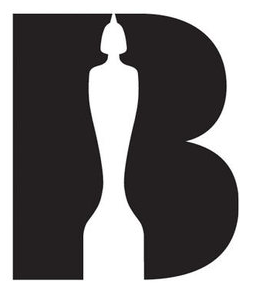 British broadcaster ITV has agreed to a deal with Shazam -- the popular music identification service -- allowing viewers of this year’s The Brits music awards to access exclusive content during the live broadcast -- a UK first.
British broadcaster ITV has agreed to a deal with Shazam -- the popular music identification service -- allowing viewers of this year’s The Brits music awards to access exclusive content during the live broadcast -- a UK first.By using Shazam to tag the show between 8pm and 10:15pm on February 20, viewers will get access to exclusive behind-the-scenes content from performers and guest presenters.
Making the announcement, David Jones, EVP Marketing for Shazam said: "We are excited that our first live Shazam-enabled program in the UK is one of the biggest nights of the year for the music industry, the BRIT Awards. People who know and love us for music will now get to experience all the great features we now bring to television".
The Shazam app, which is typically used to identify recorded music by sampling a few seconds of content and looking it up in its ten million strong song database, is available for a range of platforms including iOS devices, Android, BlackBerry, and Windows Phone.
-

Vertu launches its first Android smartphone. Anyone got a spare $21,700?
Publié: février 12, 2013, 3:48pm CET par Wayne Williams
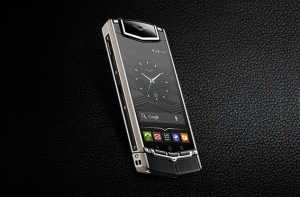 Luxury British smartphone manufacturer Vertu used to be owned by Nokia and made its name producing incredibly expensive Symbian handsets. But times move on, and the company is now focusing on producing incredibly expensive Android handsets.
Luxury British smartphone manufacturer Vertu used to be owned by Nokia and made its name producing incredibly expensive Symbian handsets. But times move on, and the company is now focusing on producing incredibly expensive Android handsets.The first new product of this endeavor is the Vertu Ti. The 3.7-inch device sports a brushed titanium frame (making it up to five times stronger, and at 180g (6oz) quite a bit heavier than most other phones), with real leather trim and a sapphire-screen.
It boasts a 1.7GHz dual-core Qualcomm Snapdragon S4 processor, 64GB of internal storage, 8-megapixel rear-facing and 1.3-megapixel front-facing cameras, and is powered by Android 4.0 (Ice Cream Sandwich). Yes, that’s right -- for the money you don’t even get Jelly Bean. It’s not 4G enabled either.
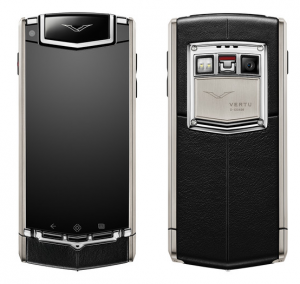 The device comes in four designs -- Titanium Black Leather (£6,700/$10,450), Titanium Pure Black (£7,900/$12,322), Titanium Black Alligator (£8,900/$13,882) and the top of the line Titanium Black PVD Titanium Red Gold Mixed Metals (£13,900/$21,678).
The device comes in four designs -- Titanium Black Leather (£6,700/$10,450), Titanium Pure Black (£7,900/$12,322), Titanium Black Alligator (£8,900/$13,882) and the top of the line Titanium Black PVD Titanium Red Gold Mixed Metals (£13,900/$21,678).Vertu had reportedly originally considered making a Windows phone, but decided there wasn’t enough demand.
The handsets are only available in around 500 retail outlets, including 70 of the firm’s own boutiques. Most of Vertu’s sales come from Asia, followed by Europe, Eastern Europe and the Middle East.
-

Microsoft’s 'getting started' guide for Surface tells you everything you need to know
Publié: février 12, 2013, 2:32pm CET par Wayne Williams
 If, like my colleague Joe Wilcox, you’ve already been lucky enough to get your hands on Microsoft’s new Surface PC, or you’re thinking of buying it in either the Windows 8 Pro or RT editions (and a stunning 45 percent of you say you'll be purchasing the former), you’ll want to download the new getting started guide immediately.
If, like my colleague Joe Wilcox, you’ve already been lucky enough to get your hands on Microsoft’s new Surface PC, or you’re thinking of buying it in either the Windows 8 Pro or RT editions (and a stunning 45 percent of you say you'll be purchasing the former), you’ll want to download the new getting started guide immediately.The official PDF manual from Microsoft Press is 68 pages long (1.35MB) and starts by introducing the device and explaining the differences between Surface RT and Pro, and also lists the accessories available to buy, before guiding readers through the setup process.
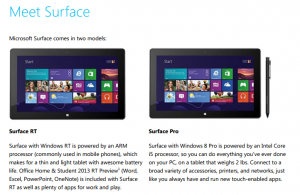
It covers everything from configuring Windows and adding accounts, to explaining how to use the interface, customizing the UI, and connecting devices and a second screen.
It’s a clear and concise guide, that really anyone with an interest in Surface needs to read (and which I would definitely have appreciated during my week long play with Surface RT).
You can download the getting started guide from here.
-

Tesco launches free Netflix rival
Publié: février 12, 2013, 10:12am CET par Wayne Williams
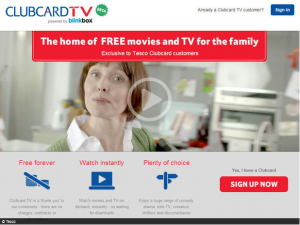 UK supermarket chain Tesco is set to launch a free online video streaming service called Clubcard TV.
UK supermarket chain Tesco is set to launch a free online video streaming service called Clubcard TV.Currently being internally beta tested by employees and set to launch officially this spring, it will (as the name suggests) be available to all shoppers with a Tesco loyalty card. And the really good news is it will be entirely free. According to Tesco, the new service is a "thank you to our customers -- there are no charges, contracts or subscriptions". Rumors that
Powered by Blinkbox, the movie and TV streaming service that Tesco bought 80 percent majority stake in 2011, it will let customers watch both movies and on-demand TV. At the moment it’s web-only, but hopefully Tesco will be adding a mobile app at some point in the future.
Tesco, which has had its reputation severely damaged as a result of the recent horsemeat scandal, will probably want to avoid offering movies featuring livestock for a while. Virgin Media’s already had to make a (tongue-in-cheek) apology on the topic.
-

Get your questions ready -- President Obama returns for a new Google+ Hangout
Publié: février 11, 2013, 1:58pm CET par Wayne Williams
 Towards the end of January, United States Vice President Joe Biden participated in a "Fireside Hangout" on Google+ to talk about reducing gun violence. A week later it was the turn of Domestic Policy Director Cecilia Munoz who used Google’s social network to discuss immigration reform.
Towards the end of January, United States Vice President Joe Biden participated in a "Fireside Hangout" on Google+ to talk about reducing gun violence. A week later it was the turn of Domestic Policy Director Cecilia Munoz who used Google’s social network to discuss immigration reform.And next up it will be US President Obama himself taking part in the 21st century equivalent of FDR’s famous radio addresses.
Days after delivering the State of the Union to Congress, and just as he did in 2012, the President will be answering a selection of top-voted questions in a live-streamed interview.
Selected participants will ask their own questions, but if you have something to say you can head to the White House YouTube channel and submit a video or text question there.
You can submit or vote on topics you’d like to hear the President address until 11:59 p.m. ET on Wednesday, February 13. The hangout itself will be on Thursday at 4:50 p.m. ET.
So do you plan on getting involved and what questions would you like the President to answer?
Photo Credit: Pete Souza/The White House
-

Dedicated YouTube channel coming to British TV
Publié: février 11, 2013, 10:59am CET par Wayne Williams
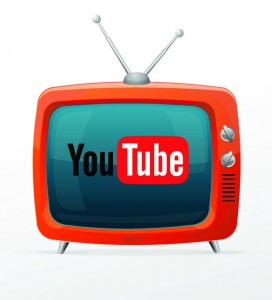 Freesat, the BBC and ITV-backed satellite TV operator, has unveiled plans to launch a dedicated YouTube channel from next month. This will be the first time Google’s service has been made available through a free-to-air provider in the UK.
Freesat, the BBC and ITV-backed satellite TV operator, has unveiled plans to launch a dedicated YouTube channel from next month. This will be the first time Google’s service has been made available through a free-to-air provider in the UK.Available by the end of March, the YouTube channel will be the very latest iteration built on HTML 5 and, according to Freesat, offer a "TV-optimized, visually stunning and fully interactive viewing experience". Viewers will be able access videos to watch through the main programming guide.
Peter Sherman, Product Marketing Manager for YouTube said, "We’re happy to be working with Freesat so that Freesat users can now access YouTube from the platform. Our creator community is developing quality content that will delight and inspire viewers and we’re pleased to be able to bring it to people in new ways".Freesat customers require a set-top box to access the service but do not have to pay a subscription fee. The service launched in 2008 and has just sold its 3 millionth product.
Photo Credit M.Stasy/Shutterstock
-

Microsoft’s attacks on Google are sad and embarrassing
Publié: février 8, 2013, 10:29am CET par Wayne Williams
 After I left school I went into sales. And one of the first things I was taught was this: never disparage the competition. Never say bad things about them -- even if what you’re saying is true, or you believe it to be at least -- because it makes the firm you’re representing seem petty and small.
After I left school I went into sales. And one of the first things I was taught was this: never disparage the competition. Never say bad things about them -- even if what you’re saying is true, or you believe it to be at least -- because it makes the firm you’re representing seem petty and small.Clearly this is a lesson Microsoft needs to learn. The firm’s marketing department, in particular whoever came up with the Scroogled campaign, is doing its best to turn the Redmond, Wash.-based technology giant into a petty, whining child, complaining about a rival rather than championing its own products. Instead of shouting triumphantly, "Use Outlook.com because it’s great and has all these benefits", Microsoft is reduced to grumbling, "Don’t use Gmail because it reads your emails". It’s not an aggressive information campaign as some people have described it. It’s a sad and frankly pathetic strategy.
I like Microsoft as a company, I like (many of) its products and to see it engaging in these sort of low-level scrappy tactics makes me a little sad. Microsoft is better than that. Or it should be.
The original Scroogled campaign attacked Google Shopping. Microsoft called out its rival for using a "pay-to-rank" practice that presented users with search results that were neither honest nor fair. The latest Scroogled crusade says people shouldn’t use Gmail because Google goes through users' personal emails to sell them ads. When I read that I cringed. It was an old, old issue dredged up in an act that surely resulted in the barrel scraper responsible for it getting a handful of splinters in the process. Sarah Perez at TechCrunch summed it up best for me when she reported the campaign with this opening line: "Hey Microsoft, 2004 called. It wants its privacy outrage debate back".
Microsoft’s The Browser You Loved To Hate campaign for Internet Explorer is the opposite of the Scroogled one. It’s clever, funny, pokes fun at the veteran browser and sells the product in the process. It makes you respect Microsoft for acknowledging how people feel about IE, and uses goodwill and positivity to attempt to change public opinion.
Scroogled is mean-spirited and in the case of the Gmail attack, comes across as desperate.
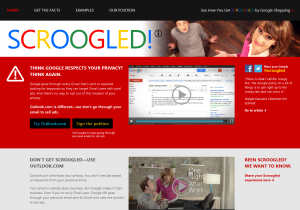 What future delights does the Scroogled campaign hold for us I wonder? "Don’t use Android because its ideas and technology are stolen from the iPhone!", "Don’t use Street View because it’s encouraging Google to look through your living room curtains and leach private data from your Wi-Fi"… Perhaps Microsoft will launch an ad campaign aimed at warning Safari users that Google might have tracked them without their permission and promising Bing won’t do the same thing (oh wait, Microsoft already did that last one).
What future delights does the Scroogled campaign hold for us I wonder? "Don’t use Android because its ideas and technology are stolen from the iPhone!", "Don’t use Street View because it’s encouraging Google to look through your living room curtains and leach private data from your Wi-Fi"… Perhaps Microsoft will launch an ad campaign aimed at warning Safari users that Google might have tracked them without their permission and promising Bing won’t do the same thing (oh wait, Microsoft already did that last one).Of course Google does bad things from time to time, but Microsoft -- hardly the most trustworthy of moral crusaders anyway -- isn’t the firm to call them out for it. Leave that to the privacy advocates.
Instead of attacking Google, Microsoft should finally try to learn from it. Google built (or acquired and polished) products that consumers wanted to use. People switched from AltaVista and other search engines to Google because its site produced the best results. Those same people switched from Hotmail to Gmail because Google had the better email service (and didn’t bombard users with flashing adverts and spam). Consumers use YouTube because it’s fantastic, and Google Maps, Chrome, Reader, Calendar etc. for the same reasons.
Sure, Google produces a fair amount of duds, but when it scores a success it’s usually because the product it’s offering is superior to what’s out there and people flock to it.
I won’t switch to Bing, or Outlook.com full time because they aren’t as good as what I’m getting from Google (I briefly moved to DuckDuckGo for search, but got drawn back to Google as we all are eventually). Scaremongering and the unholy trinity of fear, uncertainty and doubt are unlikely to ever make me switch my search engine or email provider.
But the promise of a genuinely superior product might.
Photo Credit: eurobanks/Shutterstock
-

Employees frequently steal (and use) confidential data when switching jobs
Publié: février 7, 2013, 1:12pm CET par Wayne Williams
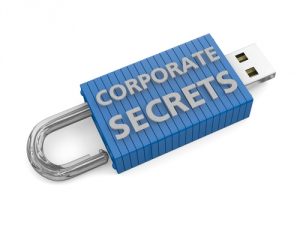 According to Symantec, businesses are increasingly at risk of insider IP theft, with staff moving, sharing and exposing sensitive data on a daily basis and, worse still, taking confidential information with them when they change employers.
According to Symantec, businesses are increasingly at risk of insider IP theft, with staff moving, sharing and exposing sensitive data on a daily basis and, worse still, taking confidential information with them when they change employers.A new survey conducted by The Ponemon Institute, and based on responses from 3,317 individuals in the United States, United Kingdom, France, Brazil, China and Korea, shows that half of employees admit to taking corporate data when they leave a job, with 40 percent saying they intend to use the data in their new position.
In a lot of cases, their actions aren’t intended as malicious, Symantec says. They often just don’t know it’s wrong to take data like this, and frequently fail to understand who owns the IP in the first place (many employees wrongly attribute ownership to the person who created it).
The survey also found that 56 percent of employees don’t think it’s a crime to use trade secrets taken from a previous employer and 62 percent think "it’s acceptable to transfer corporate data to their personal computers, tablets, smartphones and cloud file-sharing apps". Once the data is there, it’s rarely deleted.
It’s a big problem, because as Symantec explains, it "means valuable intelligence is falling into the hands of competitors. Ultimately, this puts everyone at risk -- the employee who takes the IP, the organization that invested in it and the new employer who unwittingly receives it. Everyone can be held accountable, and no one wins".
Based on the survey results Symantec recommends organizations take action in three ways -- educate their employees about IP theft, enforce non-disclosure agreements (NDAs), and monitor inappropriate access and use of IP (something which is often easier said than done).
Symantec’s complete report, What’s Yours Is Mine: How Employees are Putting Your Intellectual Property at Risk, is available for download.
Photo Credit: BruceParrott /Shutterstock
-

BlackBerry's plans to take over your smartphone foiled by a misfiring app
Publié: février 6, 2013, 2:38pm CET par Wayne Williams
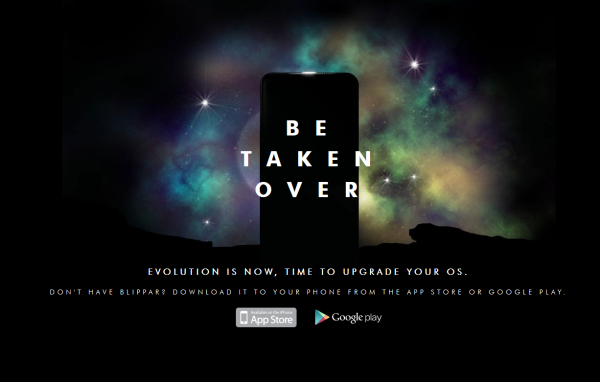
You’ve read all the press about the new BlackBerry 10 smartphones, and you’re intrigued enough to want to know more. Well, a clever new marketing campaign lets you transform your existing iOS or Android device into a BlackBerry Z10 using augmented reality. Well sort of.
Unlike the Playboy interactive cover which uses Layar, you’ll need to have the free Blippar app installed on your phone. Once done, scan the special BB Take Over Me webpage (or just scan the image here, if you prefer) and your phone will be instantly transformed into an interactive Z10. Or at least that’s the theory.
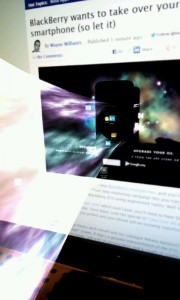 Both myself and my colleague Mihaita Bamburic found it just froze on the “Touch to start” screen. If that’s a genuine representation of the Z10, BlackBerry has a real problem on its hands. Still a bit of perseverance (and a couple of crashes later) and I finally got it working.
Both myself and my colleague Mihaita Bamburic found it just froze on the “Touch to start” screen. If that’s a genuine representation of the Z10, BlackBerry has a real problem on its hands. Still a bit of perseverance (and a couple of crashes later) and I finally got it working.Once your smartphone has been "taken over" you’ll see lots of apps streaming out of the silhouetted phone on the web page. Afterwards you'll be taken to a demo of the Z10 running in your browser and can try out some of the device’s features for yourself.
It’s obviously just a bit of fun, but it’s a clever idea (when it works), and one I’m sure we’ll see a lot more of in the future.
-

Layar brings Playboy to life on your smartphone
Publié: février 6, 2013, 12:49pm CET par Wayne Williams
 The publisher of the Dutch edition of Playboy has started adding Layar augmented reality codes to the cover and certain pages inside of the magazine, providing a little interactive treat for iOS and Android smartphone owners.
The publisher of the Dutch edition of Playboy has started adding Layar augmented reality codes to the cover and certain pages inside of the magazine, providing a little interactive treat for iOS and Android smartphone owners.When scanned with the Layar app, the cover of the current Playboy Netherlands comes to life, showing semi-nude, partially animated clips of the three potential Playmate of the Year cover models, Beau, Nadine and Lotte.
Inside the magazine, last year’s Playmate winner -- Zimra -- introduces readers to the interactive magazine in a video, and a secret page allows them to ogle 2012’s worthy winner via the wonders of AR.
Other content on offer includes videos of gadgets, cars and tech, a flashback to the girls of 1984, music playlist links, movies, TV and videogame trailers, competitions and more.
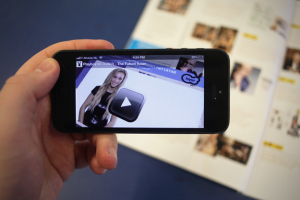 "We saw some other magazines who were experimenting with Layar," Patrick Goldsteen, editor in chief of Playboy NL explains. "This gave us some insights into what we could do with it and we saw some great opportunities to extend the experience of the magazine reader. As Playboy we have a great amount of content but are limited to the 114 pages of the magazine. With Layar we virtually have an unlimited amount of possibilities to publish extra content".
"We saw some other magazines who were experimenting with Layar," Patrick Goldsteen, editor in chief of Playboy NL explains. "This gave us some insights into what we could do with it and we saw some great opportunities to extend the experience of the magazine reader. As Playboy we have a great amount of content but are limited to the 114 pages of the magazine. With Layar we virtually have an unlimited amount of possibilities to publish extra content".If you install the Layar app on your smartphone, you can experience the delights of Beau, Nadine and Lotte by scanning the cover for yourself. It’s NSFW though, so be warned.
-

Liberty Global acquires Virgin Media for $23.3 billion
Publié: février 6, 2013, 9:47am CET par Wayne Williams
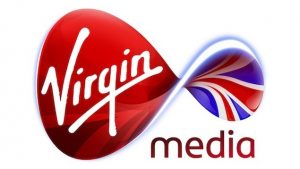 International television and telecommunications company Liberty Global has announced the acquisition of the Virgin Media for $23.3 billion in cash and stock, creating the UK’s second largest pay-TV business after BskyB.
International television and telecommunications company Liberty Global has announced the acquisition of the Virgin Media for $23.3 billion in cash and stock, creating the UK’s second largest pay-TV business after BskyB.Virgin Media will retain its name and logo, for the time being at least, and the company’s 4.9 million subscribers are unlikely to notice any major changes.
"Adding Virgin Media to our large and growing European operations is a natural extension of the value creation strategy we've been successfully using for over seven years," Liberty Global CEO Mike Fries said. "Virgin Media will add significant scale and a first-class management team in Europe's largest and most dynamic media and communications market. After the deal, roughly 80 percent of Liberty Global's revenue will come from just five attractive and strong countries -- the UK, Germany, Belgium, Switzerland and the Netherlands".
Virgin Media CEO Neil Berkett commented: "Over the past six years, Virgin Media has transformed the digital experience of millions of customers, catalyzed a deep-rooted change in the UK’s digital landscape and delivered impressive growth and returns for our shareholders. I’m confident that this deal will help us to build on this legacy. Virgin Media and Liberty Global have a shared ambition, focus on operational excellence and commitment to driving shareholder value. The combined company will be able to grow faster and deliver enhanced returns by capitalizing on the exciting opportunities that the digital revolution presents, both in the UK and across Europe".
The combined reach of Liberty Global and Virgin Media will cover 47 million homes, and serve 25 million customers across 14 countries.
-

Backupify’s new developer platform aims to accelerate SaaS adoption
Publié: février 5, 2013, 2:02pm CET par Wayne Williams
 Data security and privacy worries are among the most often cited barriers preventing businesses from moving to the cloud. Backupify hopes to address that concern by rolling out a core set of APIs that will allow Software as a Service ISVs (Independent Software Vendors) to integrate the firm’s data protection functionality into their applications.
Data security and privacy worries are among the most often cited barriers preventing businesses from moving to the cloud. Backupify hopes to address that concern by rolling out a core set of APIs that will allow Software as a Service ISVs (Independent Software Vendors) to integrate the firm’s data protection functionality into their applications.The aim of the Backupify Developer Platform is to make it easier for SaaS companies to offer the ability to store a secure second copy of their customer’s data off-site through Backupify, thereby assuaging their client’s security concerns. Something Backupify says "will help accelerate market acceptance of SaaS applications by allowing ISVs to continue to focus on what they do best while relying on Backupify to protect their customers’ data".
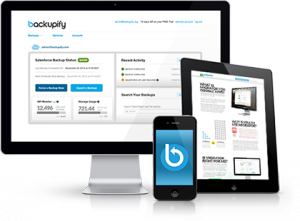 The Backupify functionality can be offered as an integrated component of the ISV's SaaS solutions, or as an optional upgrade.
The Backupify functionality can be offered as an integrated component of the ISV's SaaS solutions, or as an optional upgrade.Speaking about the new developer platform, Rob May, CEO of Backupify, said: "Our experience in backup and recovery solutions for Google Apps and Salesforce customers has taught us that there is tremendous demand in the market for independent data protection for all SaaS applications. Customers and ISVs have approached us over the years to support their SaaS applications, which led us to create the developer platform. We’re excited to work with leading ISVs on the initial integrations".
The Backupify API and initial ISV partner integrations will be available in Q2 2013, with confirmed beta phase partners including Apptivo, Freshdesk, Mavenlink, Nimble and Pipeline Deals. ISVs interested in joining the Backupify Developer Platform can find out more here.
Photo Credit: Lightspring/Shutterstock
-

BlackBerry bribes -- ah, rewards -- app developers with a limited edition red Z10
Publié: février 5, 2013, 1:47pm CET par Wayne Williams
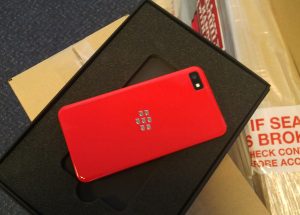 It’s certainly one way to make sure your app store attracts a decent number of apps -- offer developers something that money can’t buy (except possibly later on through eBay). BlackBerry -- formerly RIM -- has produced a limited edition red BlackBerry Z10 for those developers who created "quality" third party apps for the new BB10 platform prior to launch.
It’s certainly one way to make sure your app store attracts a decent number of apps -- offer developers something that money can’t buy (except possibly later on through eBay). BlackBerry -- formerly RIM -- has produced a limited edition red BlackBerry Z10 for those developers who created "quality" third party apps for the new BB10 platform prior to launch.There will be just 12,000 units of the new device made, and BlackBerry estimates those developers who qualify for one (and who must also have a BlackBerry Dev Alpha A or B testing device), will receive their handsets in 6-8 weeks. The company will email successful developers and explain how to trade a Dev Alpha unit for the new device.
Each hot-rod red Z10 will have the words "BlackBerry Developer" engraved on it, and come with a unique serial number.
Announcing the move at the BlackBerry Jam developer conference in Amsterdam today, BlackBerry's VP of developer relations Alec Saunders said that early developers will be "the only ones that will have these devices because they're the ones that earned them".
He did however, say the phone will also be made available to new developers, provided they get their apps accepted by 28 February, so there's still a chance you can get your hands on one if you act quickly.
-

The evasi0n iOS 6.x jailbreak now available
Publié: février 4, 2013, 6:06pm CET par Wayne Williams
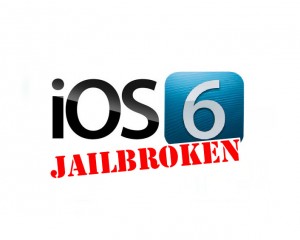 The lack of an untethered jailbreak for iOS 6.x has been frustrating for many iPhone/iPod touch/and iPad users desperate to liberate their devices, install all their beloved jailbreak apps, and apply their favorite tweaks. A friend of mine is keen to buy an iPhone 5, but hasn’t purely because he’s been waiting to make sure of an iOS 6 jailbreak.
The lack of an untethered jailbreak for iOS 6.x has been frustrating for many iPhone/iPod touch/and iPad users desperate to liberate their devices, install all their beloved jailbreak apps, and apply their favorite tweaks. A friend of mine is keen to buy an iPhone 5, but hasn’t purely because he’s been waiting to make sure of an iOS 6 jailbreak.Well the good news for him, and other users keen to remove the limitations on their Apple devices, is the evad3rs team has rolled out its highly anticipated evasi0n hack for all Apple hardware running iOS6-iOS6.1.
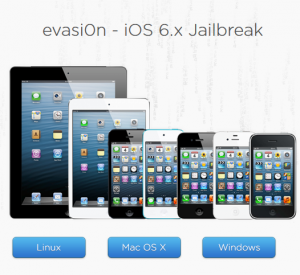 There are downloads for Windows, Mac OS X and Linux and jailbreaking your device takes five minutes and is very straightforward. Before applying the hack make sure you’ve backed up your device using iTunes or iCloud (triple check everything is backed up before proceeding) and disable the lock passcode feature if on. It’s worth doing a fresh install, updating your device to iOS6.1 via iTunes if you haven’t already done so.
There are downloads for Windows, Mac OS X and Linux and jailbreaking your device takes five minutes and is very straightforward. Before applying the hack make sure you’ve backed up your device using iTunes or iCloud (triple check everything is backed up before proceeding) and disable the lock passcode feature if on. It’s worth doing a fresh install, updating your device to iOS6.1 via iTunes if you haven’t already done so.The evad3rs team warns against using your computer while the jailbreak is going on (especially don't start iTunes or Xcode).
If the process halts midway through you can restart the program or reboot your device.
The important Cydia packages have been updated, so once your device is jailbroken you’ll be able to get the apps you want.
-

The stripped-down Model A Raspberry Pi now available in Europe
Publié: février 4, 2013, 2:34pm CET par Wayne Williams
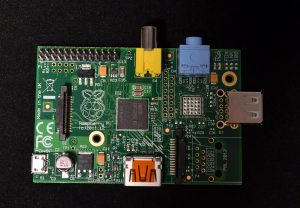 The Model B Raspberry Pi is hardly expensive, costing just $35 (plus local taxes and shipping/handling fees). But if that’s a little too much for you, or you don’t need fancy features like Ethernet, and 256MB of RAM sounds more than adequate, you can now get your hands on the Model A Raspberry Pi for a bargain $10 cheaper.
The Model B Raspberry Pi is hardly expensive, costing just $35 (plus local taxes and shipping/handling fees). But if that’s a little too much for you, or you don’t need fancy features like Ethernet, and 256MB of RAM sounds more than adequate, you can now get your hands on the Model A Raspberry Pi for a bargain $10 cheaper.Available from Premier Farnell/Element 14 and RS Components, the Model A version of the popular credit card-sized ARM GNU/Linux computer will cost just $25. Although it’s currently only available in Europe, it will be rolling out to the rest of the world shortly. If you live in the US you can pre-order one, but there will be a slight delay before the order can be fulfilled.
The Model A might have half the RAM, just one USB port and no Ethernet, but that does mean it consumes less power than its sibling, making it ideal for projects powered by batteries or solar power.
Photo credit: The Raspberry Pi Foundation
-

British Telecom cuts its broadband prices and announces BT Cloud, a new online storage service
Publié: février 4, 2013, 11:14am CET par Wayne Williams
 BT has said it will end traffic throttling, remove usage caps on all but its entry level broadband packages, and slash the price too.
BT has said it will end traffic throttling, remove usage caps on all but its entry level broadband packages, and slash the price too.Its new Totally Unlimited Broadband offering will be priced from £16 a month for 16Mbps copper broadband, £23 for 38Mbps Infinity, and £26 for 76Mbps Infinity. New customers will also get the first six months free.
In addition, the provider is rolling out a new online storage service. BT Cloud is available for all consumer broadband customers, with standard users getting 2GB of free storage, and Infinity 76Mbps and Unlimited customers receiving a much more generous 50GB allowance.
Making the announcement, John Petter, managing director of BT’s Consumer division, said: "We believe we have boosted our broadband offering by moving our best broadband deals to totally unlimited. Customers told us that they wanted to be able to enjoy catch-up TV, streamed films and other bandwidth-eating applications without having to worry about going over their limit or being slowed down by their ISP. But we wanted to make that really affordable too, without the sort of traffic management Virgin Media, TalkTalk or EE customers may find themselves subject to. Unlike Sky, we’re extremely confident that our network can stand up to the extra bandwidth demands from totally unlimited products everywhere across the UK".
Photo Credit: T. L. Furrer/Shutterstock
-

Twitter hacked -- approximately 250,000 accounts affected
Publié: février 2, 2013, 9:32am CET par Wayne Williams
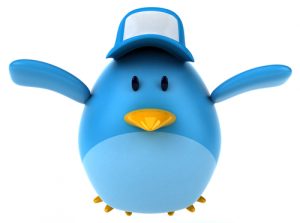 If you've just received an email from Twitter warning that as a precautionary security measure the micro-blogging site has reset your Twitter account password, and inviting you to create a new one, you should take it seriously. Very seriously.
If you've just received an email from Twitter warning that as a precautionary security measure the micro-blogging site has reset your Twitter account password, and inviting you to create a new one, you should take it seriously. Very seriously.According to Twitter the service recently "detected an attack on our systems in which the attackers may have had access to limited user information -- specifically, your username, email address and an encrypted/salted version of your password (not the actual letters and numbers in your password)".
Details of the attack can be found in a blog post in which Twitter explains that the attackers may have gained access to details for approximately 250,000 users. A relatively small proportion, seeing that Twitter has 200 million active monthly users.
Twitter goes to explain that "this attack was not the work of amateurs, and we do not believe it was an isolated incident. The attackers were extremely sophisticated, and we believe other companies and organizations have also been recently similarly attacked. For that reason we felt that it was important to publicize this attack while we still gather information, and we are helping government and federal law enforcement in their effort to find and prosecute these attackers to make the Internet safer for all users".
 I'm among the 250,000 users who were affected by this hack and this morning received two messages from Twitter. The first warning that my password had been reset, and the other containing a link to create a new one. If you receive the same messages and, like me, are adverse to clicking these kind of links (this is the perfect opportunity for phishers of course) you can just go to Twitter and try to log in. Enter your old email address, phone number, or username and Twitter will send you a fresh reset link.
I'm among the 250,000 users who were affected by this hack and this morning received two messages from Twitter. The first warning that my password had been reset, and the other containing a link to create a new one. If you receive the same messages and, like me, are adverse to clicking these kind of links (this is the perfect opportunity for phishers of course) you can just go to Twitter and try to log in. Enter your old email address, phone number, or username and Twitter will send you a fresh reset link.The micro-blogging site says that while "only a very small percentage of our users were potentially affected by this attack, we encourage all users to take this opportunity to ensure that they are following good password hygiene, on Twitter and elsewhere on the Internet. Make sure you use a strong password -- at least 10 (but more is better) characters and a mixture of upper- and lowercase letters, numbers, and symbols -- that you are not using for any other accounts or sites".
All good advice of course. So whether you received the emails or not, now is a very good time to change your Twitter password because you can never be too careful.
Photo Credit: Julien Tromeur/Shutterstock
-

Kim Dotcom offers a $13,500 bounty to anyone who can break Mega’s encryption
Publié: février 1, 2013, 11:52am CET par Wayne Williams
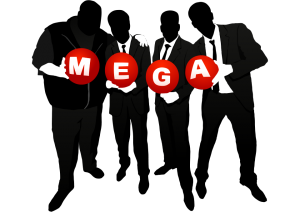 Mega has come in for some criticism since it launched, with the likes of Ars Technica, among others, questioning exactly how secure Kim Dotcom’s new file storage and sharing service actually is. Cryptography researcher Steve Thomas even created a tool designed to reveal passwords stored in confirmation emails.
Mega has come in for some criticism since it launched, with the likes of Ars Technica, among others, questioning exactly how secure Kim Dotcom’s new file storage and sharing service actually is. Cryptography researcher Steve Thomas even created a tool designed to reveal passwords stored in confirmation emails.But despite all this, Mega has so far proven to be a sturdy ship. Although it has had a few (quickly plugged) leaky holes, which is to be expected considering it’s still very new, nothing’s come along so far to sink it. And Kim Dotcom is so sure Mega’s security is uncrackable, he’s prepared to put his money where his mouth is.
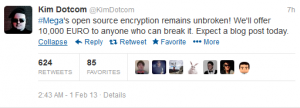 The brash entrepreneur announced his intentions in a tweet earlier, stating: "#Mega's open source encryption remains unbroken! We'll offer 10,000 EURO to anyone who can break it."
The brash entrepreneur announced his intentions in a tweet earlier, stating: "#Mega's open source encryption remains unbroken! We'll offer 10,000 EURO to anyone who can break it."10,000 euros/$13,500 is a decent amount of cash up for grabs, and will likely appeal to hard up hackers looking to line their pockets and make a name for themselves (the first person to crack the high profile site will no doubt gain a lot of press attention). But I can’t help thinking that if Dotcom is truly convinced his site is uncrackable, the bounty would be much higher. Maybe it will increase the longer the site's encryption goes unbroken.
Things have certainly been busy behind the scenes at the new file locker. The service, which now lets you change or reset your password is, according to Dotcom, currently hosting around 50 million files. And the unofficial Mega search engine which popped up was quickly blocked after less than 24 hours.
-

Microsoft rolls out Bing apps for Office
Publié: février 1, 2013, 8:56am CET par Wayne Williams
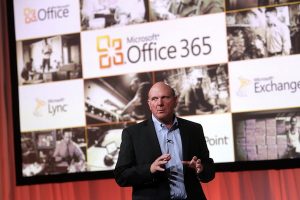 There are already Bing-powered apps for Windows 8, Windows Phone, and Xbox, and now Microsoft’s search platform has made some free apps for the software giant’s new Office 365 Home Premium suite (what, you thought Office 2013 was going to get some Bing love?)
There are already Bing-powered apps for Windows 8, Windows Phone, and Xbox, and now Microsoft’s search platform has made some free apps for the software giant’s new Office 365 Home Premium suite (what, you thought Office 2013 was going to get some Bing love?)At the moment there are five apps on offer -- Bing News Search for Office, Bing Finance (Beta) for Office, Bing Dictionary (English) for Office, Bing Maps for Office, and Bing Image Search for Office.
According to Microsoft, "Our goal is to make Bing available in convenient and intuitive ways that take advantage of knowledge Bing has assembled for search… With Bing Apps for Office we are introducing ways for you to be more productive without having to leave the applications".
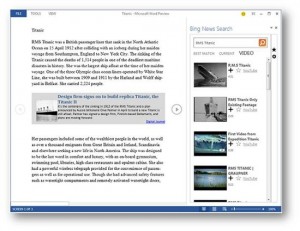 So what do the apps actually do? Well as you’d probably expect, Bing News Search for Office lets you search for news and related videos from within a Word document and paste in any stories.
So what do the apps actually do? Well as you’d probably expect, Bing News Search for Office lets you search for news and related videos from within a Word document and paste in any stories.Bing Finance (Beta) for Office lets you build a finance portfolio table in Excel and input stock symbols, while Bing Dictionary (English) for Office provides spellings and definitions, and if you’re not at all sure how to spell a word, type it in as it sounds and Bing will attempt to identify it for you.
With Bing Maps for Office people can plot location details on a map and the app also has a data visualization tool for Excel. As an example of what this could be used for, Microsoft says "imagine overlaying census data on a state map". So go ahead and do that.
 Finally, Bing Image Search for Office lets you search for images on the web from within a Word document. Handy if you want a picture to illustrate your document or flier.
Finally, Bing Image Search for Office lets you search for images on the web from within a Word document. Handy if you want a picture to illustrate your document or flier.The apps are all available to download now. Provided you have a copy of Office 365 Home Premium, of course.
So what do you think about adding Bing apps to Office? Is it something you'd be likely to do? I have a two monitor setup at home, so use one screen for Office and the other for research, email and so on. But I can see these coming in handy on a laptop or tablet.
-

Google invites you to explore the Grand Canyon
Publié: janvier 31, 2013, 2:07pm CET par Wayne Williams
 Google Maps and Street View provide detailed coverage of much of the world, and today the search giant is adding the Grand Canyon to its list of fully explorable locations.
Google Maps and Street View provide detailed coverage of much of the world, and today the search giant is adding the Grand Canyon to its list of fully explorable locations.Captured as part of Google’s Trekker project, the 9,500 interactive -- and at times frankly breathtaking -- panoramic images cover more than 75 miles of trails and surrounding roads. If you’ve always fancied hiking along the canyon but have never had the time, money or stamina, you can now do it from the comfort of your own home.
This latest project, which required the Google Maps team to lug 40lb 15-lens camera backpacks along the length of the canyon, will let you "hike down the famous Bright Angel Trail, gaze out at the mighty Colorado River, and explore scenic overlooks in full 360-degrees". Other locations Google recommends you view include the South Kaibab Trail and the spectacular Meteor Crater.
It’s all very impressive, and just another example of how far Google is prepared to go to make sure it stays far ahead of its would-be mapping rivals.
-

EE's 4G now available to around 45 percent of the UK population
Publié: janvier 31, 2013, 1:06pm CET par Wayne Williams
 EE (formerly Everything Everywhere) was created by the merger of the T-Mobile and Orange businesses in 2010, becoming the UK’s largest mobile network operator in the process. It’s also currently the only provider offering 4G LTE connectivity in the UK, and has just expanded its 4G data service to cover an additional nine towns and cities.
EE (formerly Everything Everywhere) was created by the merger of the T-Mobile and Orange businesses in 2010, becoming the UK’s largest mobile network operator in the process. It’s also currently the only provider offering 4G LTE connectivity in the UK, and has just expanded its 4G data service to cover an additional nine towns and cities.This expansion means 4G EE is now available in a total 27 UK locations, making it -- according to EE at least -- accessible to nearly half of the UK’s population.
"As the first operator to bring 4G to the UK, it is important that we make it accessible to as much of the population as possible, as quickly as possible," Olaf Swantee, CEO of EE said, regarding the expansion. "To be ahead of schedule and covering approximately 45 percent of the population within just 90 days of the launch is a great achievement for our network team."The new locations to gain access to 4G are Amersham, Bolton, Chelmsford, Hemel Hempstead, Southend-on-Sea, Stockport, Sunderland, Sutton Coldfield and Wolverhampton.
-

Judge rules Samsung did not ‘willfully’ infringe Apple’s patents
Publié: janvier 30, 2013, 11:11am CET par Wayne Williams
 On 24 August 2012, after a thirteen day trial and three full days of deliberation, a California jury found Samsung guilty of infringing on several Apple patents and awarded the American company $1.05 billion in damages. The jury also found that Samsung had willfully stolen design elements from Apple, a damning finding which could have seen the amount of damages significantly increased.
On 24 August 2012, after a thirteen day trial and three full days of deliberation, a California jury found Samsung guilty of infringing on several Apple patents and awarded the American company $1.05 billion in damages. The jury also found that Samsung had willfully stolen design elements from Apple, a damning finding which could have seen the amount of damages significantly increased.Fortunately for Samsung, following post-trial hearings held over the past few months, US District Court Judge Lucy Koh last night issued a ruling overturning the jury’s willful infringement finding, a move which prevents Apple from being able to seek additional damages.
"The Court cannot conclude that Apple has met its burden to show willfulness by clear and convincing evidence. In light of Samsung’s reasonable, if ultimately unsuccessful, noninfringement defense, Apple simply has not established that there was an objectively high likelihood that Samsung’s actions would constitute infringement," she wrote in relation to patent D’677, which covers the design of the front of the iPhone. Her view was the same for other patents Samsung was found to have infringed. You can view the PDF copy of the ruling here.
So what does this mean for both tech companies? Well essentially it means Apple can’t ask for any more damages, and although the $1.05 billion award still stands, there’s a very real likelihood this could be reduced in light of the new ruling. It’s good news for Samsung, and bad news for Apple, but the American tech giant still remains the clear winner overall in this particular court battle.
Judge Koh also denied requests from both Samsung and Apple for a new trial.
What’s your view of this latest development? Do you think Samsung has got off lightly here, or do you think Judge Koh was right to overturn the jury on this matter? Comments below.
Photo Credit: JustASC/Shutterstock
-

Google donates 15,000 Raspberry Pi microcomputers to UK schools
Publié: janvier 29, 2013, 4:09pm CET par Wayne Williams
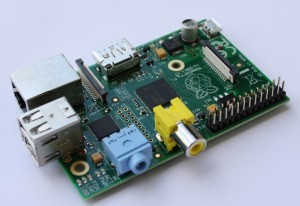 Although the Raspberry Pi was originally aimed at encouraging school children to learn to program as they did in 1980s and 90s, the affordable credit card-sized ARM GNU/Linux computer has actually ended up appealing to a broad range of ages.
Although the Raspberry Pi was originally aimed at encouraging school children to learn to program as they did in 1980s and 90s, the affordable credit card-sized ARM GNU/Linux computer has actually ended up appealing to a broad range of ages.The Raspberry Pi Foundation has never lost sight of its initial purpose though, and thanks to the generosity of Google, it’s about to make some serious headway into British schools.
A grant from Google Giving will see 15,000 Raspberry Pi Model Bs distributed to children around the UK. According to Liz Upton, marketing manager and wife of Pi creator Eben: "We’re absolutely made up over the news; this is a brilliant way for us to find kids all over the country whose aptitude for computing can now be explored properly. We believe that access to tools is a fundamental necessity in finding out who you are and what you’re good at. We want those tools to be within everybody’s grasp, right from the start".
The Raspberry Pi Foundation, Google, and six UK educational partners will work together to find the children who will be likely to benefit the most from having their very own Raspberry Pi.
-

The rumors were true: Apple debuts a 128GB fourth gen iPad
Publié: janvier 29, 2013, 3:15pm CET par Wayne Williams
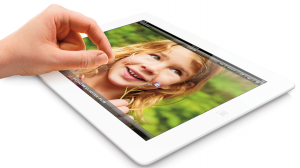 Apple attracts rumors like no other tech company. In the past week alone we’ve heard about what to expect from the iPad 5, suggestions that Apple is working on a budget iPhone that may or may not feature plenty of plastic in its design, and there’s even been talk of a larger capacity iPad 4.
Apple attracts rumors like no other tech company. In the past week alone we’ve heard about what to expect from the iPad 5, suggestions that Apple is working on a budget iPhone that may or may not feature plenty of plastic in its design, and there’s even been talk of a larger capacity iPad 4.It turns out this last rumor was right on the money, as Apple has just announced a 128GB version of the fourth generation iPad with Retina display.
The larger capacity iPad, which comes in both Wi-Fi and Wi-Fi + Cellular versions, and in black and white, is designed purely to bring in more money for Apple and help shore up the share price. Or as Philip Schiller, Apple’s senior vice president of Worldwide Marketing, phrases it:
With more than 120 million iPads sold, it’s clear that customers around the world love their iPads, and everyday they are finding more great reasons to work, learn and play on their iPads rather than their old PCs. With twice the storage capacity and an unparalleled selection of over 300,000 native iPad apps, enterprises, educators and artists have even more reasons to use iPad for all their business and personal needs.
The new 128GB versions will be available from Tuesday, February 5 for a suggested retail price of $799 (Wi-Fi) and $929 (Wi-Fi + Cellular model).
-

Samsung rolls out a limited edition Garnet Red version of the Galaxy Tab 2
Publié: janvier 29, 2013, 1:16pm CET par Wayne Williams
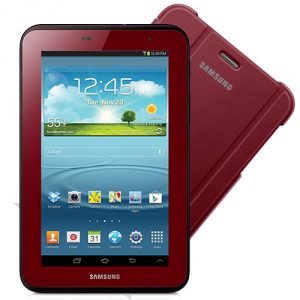 Red seems to be the in color for mobile devices at the moment. First Verizon gave the world a red edition of Nokia's mid-range Lumia 822 smartphone, and now Samsung has introduced a Garnet Red version of its popular Galaxy Tab 2 slate. This isn't the first Samsung device to come in the bloody hue -- AT&T offered a Garnet Red edition of the Galaxy S III last summer.
Red seems to be the in color for mobile devices at the moment. First Verizon gave the world a red edition of Nokia's mid-range Lumia 822 smartphone, and now Samsung has introduced a Garnet Red version of its popular Galaxy Tab 2 slate. This isn't the first Samsung device to come in the bloody hue -- AT&T offered a Garnet Red edition of the Galaxy S III last summer.Currently only available for the US market, the striking tablet comes with a matching case and Android 4.1 Jelly Bean onboard, in place of Ice Cream Sandwich. All the other specs remain the same, such as the 7 inch 1024 by 600 screen, 1GHz dual-core processor, 1GB RAM, and 8GB of internal storage.
"This new eye-catching version of the Galaxy Tab 2 offers endless entertainment in the palm of your hand, while the stylish Garnet Red look will set you apart from the crowd," Samsung senior vice president Michael Abary said. "The Garnet Red version of the Galaxy S III has been incredibly well-received, so we are happy to make the same brilliant color available for our Galaxy Tab 2 as well".
The tablet is available from the likes of Amazon, Walmart, Office Depot, Fry's Electronics and Toys R Us, and priced at around $220. If you like the look of it, you’ll want to act quickly as the Garnet Red edition will only be available for a short time.
-

Virgin Media to begin charging for Wi-Fi on the London Underground
Publié: janvier 25, 2013, 11:21am CET par Wayne Williams
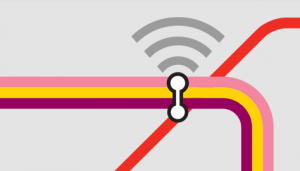 Introduced in time for last year’s Olympics, Virgin Media’s free Wi-Fi service has proven to be a big hit with people travelling on the tube, but all good things come to an end, and this particular gravy train is about to terminate. Well, for some people at least.
Introduced in time for last year’s Olympics, Virgin Media’s free Wi-Fi service has proven to be a big hit with people travelling on the tube, but all good things come to an end, and this particular gravy train is about to terminate. Well, for some people at least.Although Virgin will be ending its free-to-all Wi-Fi service from Tuesday (29 January), the good news is if you’re a Virgin Media broadband or mobile customer, or are with EE (Orange and T-Mobile), or Vodafone, you’ll be able to continue to use it for gratis. So that’s bad news for O2 and 3 subscribers in particular.
If you’ve used the free Wi-Fi before and are on one of the supported carriers, you should receive an email telling you the service will still be free for you (if you haven’t already). If you’re with another operator, you can still use the Wi-Fi but it will cost you £2 for a day’s access, £5 for a week, or £15 for a monthly Virgin Media Wi-Fi Pass.
Virgin plans to beef up its Wi-Fi service over the coming months, adding hotspots to a further 28 stations by the end of the year.
-

Verizon rolls out a flashy red Nokia Lumia 822 for lovers. And people who just like red
Publié: janvier 25, 2013, 9:42am CET par Wayne Williams
 Valentine’s Day is coming and since nothing says "I love you" more than a Windows Phone, Verizon has decided to mark the occasion by debuting a red edition of Nokia's mid-range Lumia 822 smartphone. The choice of color will certainly help the handset stand out, seeing as the 822 is otherwise only available in sober shades -- black, white, and grey.
Valentine’s Day is coming and since nothing says "I love you" more than a Windows Phone, Verizon has decided to mark the occasion by debuting a red edition of Nokia's mid-range Lumia 822 smartphone. The choice of color will certainly help the handset stand out, seeing as the 822 is otherwise only available in sober shades -- black, white, and grey.The small red is available to buy from Big Red now, either online, or from a Verizon Wireless retail store, and can be picked up for free on a new two-year contract.
The Windows Phone 8 model features 4G LTE connectivity, a 4.3-inch display with an 800 by 480 resolution, and a dual-core 1.5GHz Qualcomm Snapdragon S4 processor with 1GB of RAM and 16GB of internal storage. It also has an 8MP back-facing camera (capable of 1080p video recording at 30 frames per second) and a 1.2MP front-facing camera.In other related Verizon/Windows Phone 8 news, the Samsung ATIV Odyssey is also now available to buy. The 4G LTE device runs $49.99 on a new two-year contact (after a $50 mail-in rebate) and boasts a 4-inch 800 by 480 Super AMOLED display, 1.5GHz dual-core Qualcomm Snapdragon S4 processor, with a 5MP back-facing camera (capable of 1080p video recording) and a 1.2MP front-facing shooter.
-

Apple approves penis-measuring app for iPad and (less well-endowed) iPhone users
Publié: janvier 24, 2013, 5:44pm CET par Wayne Williams
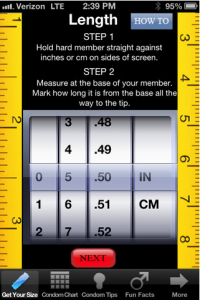 Apple used to be quite picky about what apps it let through into the App Store, but it’s relaxed the rules in recent times, and now we’ve reached the point where an app that lets you measure your member and see how you compare in the length and/or girth world rankings is perfectly fine.
Apple used to be quite picky about what apps it let through into the App Store, but it’s relaxed the rules in recent times, and now we’ve reached the point where an app that lets you measure your member and see how you compare in the length and/or girth world rankings is perfectly fine.Condom Size bills itself as an educational app designed to help users determine the proper condom size they need. It also includes educational tips, fun facts about condoms, and more.
Measuring length involves pressing your erect penis against the side of the screen while girth requires the use of a piece of string. When you’ve finished measuring, the $0.99 app will tell you the condom size you need, recommend a make and brand of prophylactic, and tell you how you compare for length and girth in the world. It helpfully points out that above 100 percent means you are larger than average and under 100 percent means… well, it’s not the size that counts, right?
Naturally the world ranking tables are not to be taken too seriously as it’s just possible users may have, ahem, massaged their measurements a little.
Apple’s store policy -- what is and isn’t allowed -- has always been a bit hit and miss and apps are occasionally pulled after being approved, usually in the wake of unfavorable reports in the press. Popular photography app 500px, which had been available since October 2011 and downloaded almost a million times, was removed from the App Store by Apple earlier in the week after customer complaints over "possible child pornography".
Since Condom Size contains no images, and is essentially just a measuring and education tool, it’s likely to be allowed to stay in store, for now.
Editor's Note: Android users can measure up, too. The app debuted on Google Play last year. Who says the best apps are developed for iOS first?
-

Twitter’s first video tweet shows how to make steak tartare in six seconds
Publié: janvier 24, 2013, 3:32pm CET par Wayne Williams
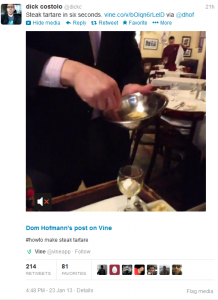 The first video tweet using an app from Vine, the start-up Twitter acquired last year, has appeared on the micro-blogging site. Originally created and sent by Dom Hofmann, co-Founder and CEO of Vine, it was then posted by Twitter boss Dick Costolo and dutifully retweeted by a couple of hundred people.
The first video tweet using an app from Vine, the start-up Twitter acquired last year, has appeared on the micro-blogging site. Originally created and sent by Dom Hofmann, co-Founder and CEO of Vine, it was then posted by Twitter boss Dick Costolo and dutifully retweeted by a couple of hundred people.The embedded video, like all clips sent using Vine, lasts six seconds, and shows the steak tartare creation process -- with optional sound -- in a loop. While this could prove rather maddening if you have lots of Vine clips visible in your stream, it’s easy enough to hide away.
The Vine app will be available as an iOS exclusive initially, but an android version is expected to follow shortly afterwards. The recording process is as simple as pressing the screen and then letting go when you’re done. Vine will have an Instagram element to it, and let you follow other users and search for clips from people they know.
How Twitter plans to deal with the inevitable deluge of offensive or pornographic clips isn’t currently known.
Steak tartare in six seconds. vine.co/v/bOIqn6rLeIDvia @dhof
— dick costolo (@dickc) January 23, 2013
Update: And Vine's just gone live at the Apple Store.
-

Symantec announces a change of direction
Publié: janvier 24, 2013, 2:31pm CET par Wayne Williams
 Symantec might have reported quarterly earnings that beat expectations, but the firm accepts it needs to do something if it is going to continue to thrive in a changing marketplace. So new CEO Steve Bennett has announced a change of direction for the anti-virus firm.
Symantec might have reported quarterly earnings that beat expectations, but the firm accepts it needs to do something if it is going to continue to thrive in a changing marketplace. So new CEO Steve Bennett has announced a change of direction for the anti-virus firm.No, the company’s not suddenly going to start making Angry Birds knock-offs, but what it does intend to do is shift its focus on to 10 key areas that will result in the combining of existing products and services and the creation of a range of new, more comprehensive alternatives. The ten areas it intends to work on are:
- Mobile workforce productivity
- Norton Protection
- Norton Cloud
- Information security services
- Identity/content-aware security gateway
- Data-center security
- Business continuity
- Integrated backup
- Cloud-based information management
- Object storage platform.
The future solutions will, Symantec says, focus on three core customer needs -- 1) make it simple to be productive and protected at home and work; 2) keep businesses safe and compliant and 3) keep business information and applications up and running.
According to Steve Bennett, "We want to enable people, businesses and countries to focus their energies and time on achieving their aspirations, instead of being consumed with how to keep their digital lives safe and protected. This is a story about more focus and better execution by Symantec to make things better and easier for our customers and partners. Our path is straightforward: Offer better products and services tailor made for customers, and make it easier for them to research, shop, buy, use, and get the help and support they need".
As well as improving and combining existing products and services, Symantec plans to develop new and more innovative ones. With that aim in mind, it intends to increase its investment in both research and development and home-grown innovation.
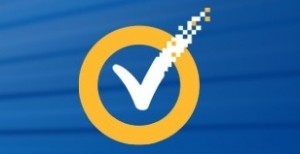 The change of direction also means a restructuring of the company. As well as the creation of a new "Office of the CEO" group, Symantec aims to reduce the number of executives and middle management positions and give front-line employees greater power and flexibility to deal with customer’s needs.
The change of direction also means a restructuring of the company. As well as the creation of a new "Office of the CEO" group, Symantec aims to reduce the number of executives and middle management positions and give front-line employees greater power and flexibility to deal with customer’s needs.The first new integrated modular offerings for customers are expected to surface over the course of the next 6-24 months.
Photo Credit: rangizzz/Shutterstock
-

Microsoft plays the nostalgia card to tempt past users back to Internet Explorer
Publié: janvier 23, 2013, 8:24pm CET par Wayne Williams
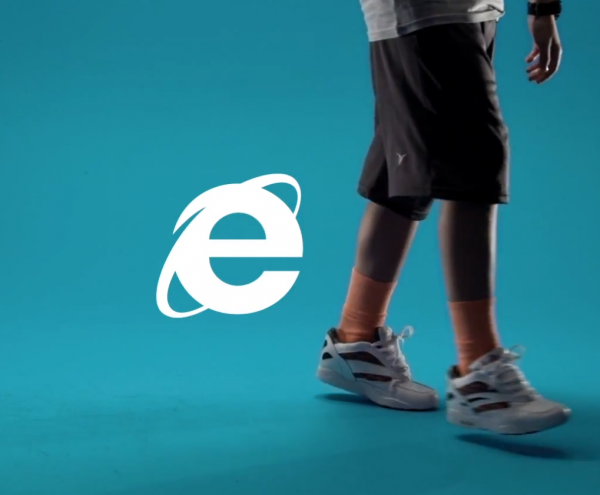 I remember clearly where I was the day Internet Explorer launched. It was 16 August 1995 and I was sitting in a room full of tech writers watching Bill Gates show off Microsoft’s new browser. And I recall thinking, "why would anyone want to use anything other than Netscape Navigator?"
I remember clearly where I was the day Internet Explorer launched. It was 16 August 1995 and I was sitting in a room full of tech writers watching Bill Gates show off Microsoft’s new browser. And I recall thinking, "why would anyone want to use anything other than Netscape Navigator?"I remember clearly, some years later, wondering why anyone would want to use a browser that wasn’t Internet Explorer when I first heard about Firebird (which later became Firefox), and then wondering a few years after that why anyone would want to use a browser that wasn’t Firefox when Chrome launched. Times, loyalties and browsers all change, and Microsoft is hoping to use nostalgia to persuade people who "grew up" with IE to give the browser another chance.
"Child of the 90s: Internet Explorer" is a trip down memory lane, reminding us of many of the things we might have forgotten from IE’s formative years. Things like yo-yos, 56k modems, 3 ¼ inch floppy disks, Tamagotchi, Trolls, and Pogs. And of course IE itself. The message of the video is that you’re no longer who you were in the nineties, and neither is Internet Explorer.
According to Microsoft, "We thought it was time to invite those of you who haven’t thought about Internet Explorer in a while to take a trip down memory lane. Internet Explorer is a child of the 90s, but we have done some serious growing up. Maybe IE was your first browser, but you haven’t used it in a while. We aren’t sure if pogs or trolls will make a comeback as well, but we do know a lot has changed with Internet Explorer".
It’s an interesting angle to take, and is part of The Browser You Loved to Hate campaign.
Microsoft has disabled comments on the new video, so I guess it’s not expecting a wave of love for the veteran browser, but so far its hashtag #Childofthe90s has generated the right sort of nostalgic response the company was no doubt hoping for.
My colleague Joe Wilcox, who admits to wearing out a commemorative Tee he got for downloading IE 3, made a good point in the news room when he observed, "What does it say really, Microsoft's claim to modern IE fame is the past". Watching the video personally just made me grateful that I don't live in the nineties any more, and certainly didn't make me wish I could go back to floppy disks, slow internet, or Internet Explorer. But maybe you'll feel differently.
I’m interested to know what you think of the new video. Will nineties nostalgia tempt you into going back? Or if you’ve switched to IE 10 what was your reason for doing so? (Windows 8 integration or something else). Comments below, please.
-

Like Zune, Microsoft can't get Surface right
Publié: janvier 23, 2013, 6:09pm CET par Wayne Williams
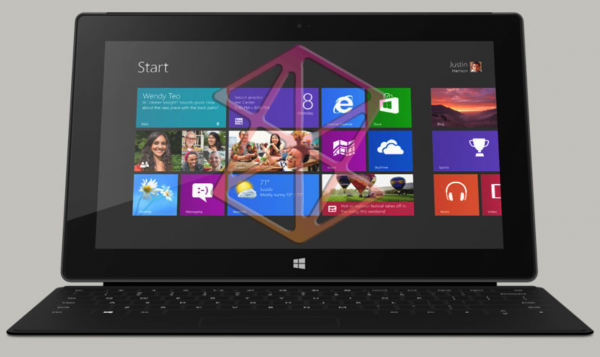
When Microsoft launched its portable music player Zune in 2006 few thought it would be a serious contender to Apple’s iPod. The fact that it was a US-only release spoke volumes. It was a product the firm simply didn’t have enough confidence in for a global launch.
And now we’re faced with a similar launch strategy for Microsoft Surface Windows 8 Pro. Yesterday the Redmond, Wash.-based corporation announced the delayed slate will be "available for purchase on Feb. 9, 2013, in the United States and Canada at all Microsoft retail stores, microsoftstore.com, Staples and Best Buy in the US, as well as from a number of locations in Canada". And the rest of the world? There’s no word.
The general view is that Surface Pro will eventually make its way to the UK, Europe, Australia and all of the other major markets in due course, but then it was expected that would be the case with Zune.
When most other tech giants launch a major new product they tend to do it globally. Apple announces a new product -- like the iPad and the iPad mini -- and bang! It’s available everywhere. Even Google, with its supply issues, has made sure its Nexus 4 is unavailable everywhere, not just in the US.
There’s not even a nod to the rest of the world in Microsoft’s Surface Pro statement. No "and coming to other markets soon". It’s just "United States and Canada" and moving on… The RT version is being pushed out to 13 additional markets worldwide, Microsoft says in the same announcement, before promoting some accessories you might like. But what about Surface Pro outside of North America? Silence. Tweets and Facebook posts asking about global availability are simply ignored.
Surface’s distribution has been a mess from the word go. Initially the RT version was sold only through Microsoft’s stores and online. The distribution was expanded to third party retailers, but really not many, and far too close to Christmas to grab the attention of shoppers.
In the UK I’ve seen plenty of commercials for the tablet on TV, as well as a spot of guerilla marketing (adverts sprayed on walls in London and Manchester), but given Surface RT is currently only available through one major retailer (John Lewis) Microsoft should think of promoting its product with an A-Team theme:
"If you want a tablet -- and not an iPad or Android product -- and IF you can find it -- maybe you can buy… MS Surface. Dum de dum, dum, dum, dum. Dum de dum, dum, dum, dum, dum..."
I used Surface RT for a week, and in that short period I grew to really like it. I’m looking forward to getting my hands on Surface Pro, with a view to maybe buying, but Microsoft isn’t making it available to me, or most of the world.
If, as a lot of pundits are saying, Microsoft plans to release a new Xbox later this year, do you think the firm will just release it in the US, or will it be sold everywhere? My money is on the latter. (When the Xbox 360 launched in 2005 there was a two week gap between it going on sale in the UK and Europe, but we at least knew it was coming). So why the tentative approach with Surface? Doesn’t Microsoft want it to succeed? Doesn’t it believe it can?
Microsoft Surface is a good product. Rough around the edges and slightly overpriced, sure. But a product that deserves to find an audience, which it won’t if Microsoft isn’t prepared to get behind it and finally get it out there. Everywhere.
-

Nikon announces Image Space, a new photo-sharing service
Publié: janvier 23, 2013, 12:28pm CET par Wayne Williams
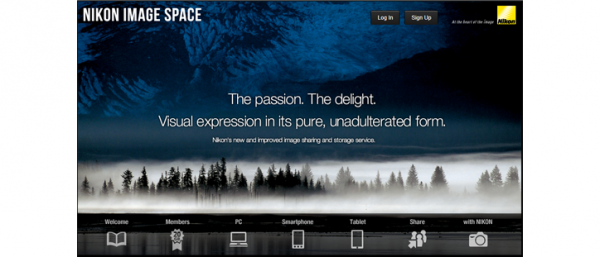 Nikon is to launch a new online photo-sharing service on January 28. The successor to the Japanese firm’s my Picturetown will be open to all, although Nikon camera users will be able to upgrade to a special account with increased storage and advanced features, for free.
Nikon is to launch a new online photo-sharing service on January 28. The successor to the Japanese firm’s my Picturetown will be open to all, although Nikon camera users will be able to upgrade to a special account with increased storage and advanced features, for free.The basic version of the service will give users 2GB of online storage. Nikon owners who upgrade through the dedicated verification app will get 20GB, and the option to password protect images and restrict downloads.
According to the announcement, “This service makes it easy for camera enthusiasts to upload, view, organize, and share their photos and movies of once-in-a-lifetime moments with greater convenience through sequential operation, which is achieved by high speed operation of the system, an intuitive user interface (UI), a clear window layout, and a simple operation flow”. Make of that what you will.
Existing my Picturetown users will be migrated to the new service automatically and won’t have to do anything.
The site at http://nikonimagespace.com will go live on January 28, 2013 at 20:00 Japan time.
-

Sky introduces a TV and movie download service for mobile phones and tablets
Publié: janvier 21, 2013, 10:59am CET par Wayne Williams
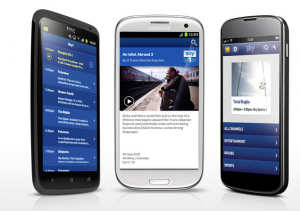 Users of the satellite TV provider’s free Sky Go service -- which enables subscribers to watch live Sky channels and on-demand programming on mobiles and tablets -- will soon be able to download TV shows and movies on their portable devices.
Users of the satellite TV provider’s free Sky Go service -- which enables subscribers to watch live Sky channels and on-demand programming on mobiles and tablets -- will soon be able to download TV shows and movies on their portable devices.According to Sky, this will make it the first mobile TV subscription service to offer downloadable Hollywood movies in the UK and Ireland.
The Sky Go Extra app will be available for Android and iOS later this week, and give Sky subscribers the chance to download as much content as they like for £5 a month (on top of their existing subscription fee). The service will support up to four users per subscription.
To encourage people to try the service, the broadcaster is offering a two-month free trial. Downloads will last a month before expiring.
Sky's Brand Director for TV products Luke Bradley-Jones said: "The way customers are thinking about the whole TV experience is changing again and it's ultimately all about the content -- however people want to watch it".
Sky has an extensive library of on-demand movies, including the entire James Bond collection.
-

Turn a Raspberry Pi into the ultimate emulator
Publié: janvier 18, 2013, 6:51pm CET par Wayne Williams
 Raspberry Pi, the popular credit card-sized ARM GNU/Linux computer, is a real throwback to the past. It was conceived as a low-cost way of encouraging people to get back into programming, as they did in the 80s and 90s, and it’s even possible to program it using the venerable BBC basic.
Raspberry Pi, the popular credit card-sized ARM GNU/Linux computer, is a real throwback to the past. It was conceived as a low-cost way of encouraging people to get back into programming, as they did in the 80s and 90s, and it’s even possible to program it using the venerable BBC basic.RPI Chameleon, a great new project from Carles Oriol, enhances the Pi’s time machine like quality, by letting it run emulators for a whole batch of ancient hardware, including the IBM Personal Computer, Atari 2600, Apple II, ZX81, ZX Spectrum, Commodore 64, and Oric-1. It can even run MAME, the arcade emulator, and you can add additional emulators to its menu too.
Described by Carles as a "Raspbian remix without the X graphical environment that uses its own launcher to run emulators for old computers, arcades and consoles", the RPI Chameleon is easy to set up and use and you can download a torrent of the required image directly from the Chameleon website.
You’ll also find instructions and a little bit of information about each of the emulators and the computers they mimic.
-

A third of all users have added a Start button and menu to Windows 8 (maybe)
Publié: janvier 18, 2013, 10:14am CET par Wayne Williams
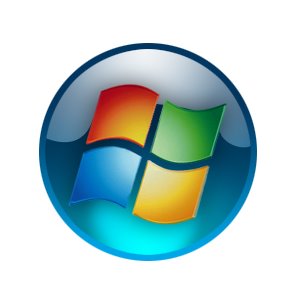 Windows 8 users fall into two simple categories. There are those that miss the old way of working and don’t really care too much about the tiled Start screen, and those users who have embraced Microsoft’s new operating system and don’t understand why people are still whittling on about the Start button and menu.
Windows 8 users fall into two simple categories. There are those that miss the old way of working and don’t really care too much about the tiled Start screen, and those users who have embraced Microsoft’s new operating system and don’t understand why people are still whittling on about the Start button and menu.The truth, however, is a large proportion of users do want the Start button and menu back, initially at least, and thanks to third party software they can fulfill that desire fairly easily. There’s no shortage of freeware solutions, ranging from my personal favorite hack, Ex7ForW8, to ViStart 8.0, and we’re now beginning to get an idea of just how popular they are.
I don’t know exactly how many Start button/menu replacements there are for Windows 8 (but I’m personally aware of at least 20). And I don’t know how many downloads they total. But then I don’t know how many copies Windows 8 has sold either. I know Microsoft says it’s shipped 60 million licenses, but that figure is not in any way a reflection of the number of actual Windows 8 users. The dreadful state of the PC market shows a lot of those "sales" are still boxed up in warehouses or sitting on shelves.
A couple of days ago Pokki announced that its freeware Start menu had been downloaded 1.5 million times on Windows 8 (downloads of course do not equate to users, any more than licenses do). My colleague Alan Buckingham covered the story and showed some rather iffy math skills when he declared that worked out to less than one percent of users. Even if his guestimate of 64 million Windows 8 users was right (which we know it isn’t because licenses are NOT PEOPLE) and the 1.5 million downloads Pokki has claimed were all individuals (which THEY AREN’T), that would actually mean just under 2.4 percent of Windows 8 users had downloaded a Start menu from Pokki.
Which is still a small amount, of course. But Pokki is just one company offering Start menus, and it’s not even the best known. Stardock Start8 coughed up some numbers at the same time as Pokki, and its are more impressive. According to CEO Brad Wardell, the trial version of the program has seen 3 million downloads since launch and it currently "sells thousands of copies a day".
Note that it "sells thousands of copies". It seems some people want a Start menu in Windows 8 so badly they are even prepared to pay $5 for it.
Getting back to the topic and pretending for a second that licenses and downloads are actual users, Stardock can claim just over 4.8 percent of Windows 8 owners have downloaded its program. Which means between them, Pokki and Stardock have close to 7.2 percent of the "market". And that figure is likely much higher when you factor in the all important detail that -- even being kind -- less than two thirds of Microsoft’s Windows 8 licenses are likely to be in the hands of actual users.
Plus, of course, there are at least another 18 Start button/menu options out there, that I know of, so it wouldn’t be too much of a stretch to say at least a third of Windows 8 users have decided to add a Start button to their OS. To begin with. We obviously don't know how many of them are still using an add-on (the Start8 download is a 30-day trial), and how many have decided to just do things Microsoft's way after using the OS for a while.
Which is all very interesting, and makes me wonder what BetaNews readers think.
If you’re a Windows 8 user, have you added a program to get the menu back, or are you using the operating system "as is"?
-

Amazon launches a dedicated MP3 store for iPhone users
Publié: janvier 17, 2013, 4:43pm CET par Wayne Williams
 Amazon has created a mobile MP3 store optimized specifically for use on iPhones and iPod touches. Built on HTML5, the new store lets users browse the 22 million strong MP3 catalog, and buy tracks directly.
Amazon has created a mobile MP3 store optimized specifically for use on iPhones and iPod touches. Built on HTML5, the new store lets users browse the 22 million strong MP3 catalog, and buy tracks directly."Since the launch of the Amazon Cloud Player app for iPhone and iPod touch, a top request from customers has been the ability to buy music from Amazon right from their devices," Steve Boom, Vice President of Amazon Music said. "For the first time ever, iOS users have a way do that -- now they can access Amazon’s huge catalog of music, features like personalized recommendations, deals like albums for $5, songs for $0.69, and they can buy their music once and use it everywhere".
To experience the new store, users just have to fire up Safari on their iPhones or iPod touches and go to http://www.amazon.com/mp3. All purchases are automatically saved to customers' Cloud Player libraries, and can be downloaded or streamed directly.
-

Give up the PC? Get real! You’d have to pry the keyboard and mouse from my cold, dead hands
Publié: janvier 17, 2013, 2:33pm CET par Wayne Williams
 My friend and colleague Joe Wilcox has a long history of quitting tech. He famously declared his independence from Apple and a month ago said he was done with Facebook. Yesterday he announced he was quitting the PC, and switching to using a Google Nexus 10 as his primary computing device. He says the journey will be tumultuous, I say why do it then?
My friend and colleague Joe Wilcox has a long history of quitting tech. He famously declared his independence from Apple and a month ago said he was done with Facebook. Yesterday he announced he was quitting the PC, and switching to using a Google Nexus 10 as his primary computing device. He says the journey will be tumultuous, I say why do it then?The truth is, the transition for Joe probably won’t be that difficult. He currently uses a Chromebook as his PC and has embraced the cloud. He is a PC user, but he’s not a real PC user. A real PC user can’t just switch to a tablet and after a few weeks be happy with the change. I love my iPad, and I loved Surface for the short time I had it. But a tablet could never be a replacement for my desktop system.
Joe needs a device he can access the web on, and do some writing on. I need a powerhouse that I can do everything on. From video editing, Photoshop work, and laying out pages in QuarkXPress, to browsing the web with a million tabs open, writing an article, writing a book, or playing a 3D game.
A tablet -- any tablet -- simply doesn’t have the power I need. My main PC rocks an Intel 3rd Generation Core i7-3770K CPU (4 x 3.50GHz), 24GB of ram, and 8TB of disk space. Yes, that’s eight terabytes. I’m currently using just under 5TB. I have two 24-inch screens. My iPad works alongside this beast as support -- providing me notification updates for things like new emails.
The thought that I could swap my PC for a tablet is laughable.
I occasionally write articles on my iPad, when I’m out and about. I’m used to typing on the screen, and I’ve written fairly sizable pieces of work. But I only do this when I have to. When I’m on my main PC I can write much, much faster. I can research on one screen, write on another. I’m a touch typist so my fingers fly over the keyboard. Swapping to just using my iPad would mean halving my work rate. Write five words, switch to the web to look up something, switch to our virtual newsroom to see what’s going on there, check on tech (and other) news, switch back and write a few more words.
I can’t work like that. I’m always doing at least three or four things at once.
Imagine a sales rep who is used to travelling hundreds of miles every day in a large, comfortable vehicle like a BMW 3-series or a Cadillac ATS and then give them a Smart electric drive car. It would be fine for short journeys, like popping to the shops, but an absolute cramped nightmare for any kind of longer journey.
In his article Joe wanted, ideally, to switch to using Surface as his primary device. But I think that would be because you can get a decent keyboard for it. Because Surface, essentially, is a PC. If Joe is serious about giving up on the PC, and just using a tablet, he has to use it as is. And that means writing all of his articles on the Nexus 10’s touch screen (or using the voice feature, as he’s said he intends to). If he buys and uses a keyboard, really all he’s doing is trading one PC for another, lesser specced device, and that would be a total cop out. I have no doubt Joe will be able to make the transition, but he'll surely find it a frustrating and ultimately unrewarding experience.
Of course Joe isn’t the first person to swap a PC for a tablet, and he won’t be the last either. My wife has already done so. She uses an iPad and her Samsung Galaxy S II almost exclusively, except on the very rare occasions when she needs to borrow the laptop to do something that requires a bigger screen and Flash -- like watching kitten videos, for example.
The PC is dead, some say. And for all the people who never really needed a PC -- those lite users who only ever email, watch some videos, and view some photos -- it probably is. But for those of us who actually use a PC for meaty tasks, who actually USE a PC, it’s alive and well, and we couldn’t swap it for another device, let alone a tablet, even if we wanted to.
Photo credit: Arcady/Shutterstock
-

UK mobile owners will soon be able to send cash payments by text
Publié: janvier 16, 2013, 12:12pm CET par Wayne Williams
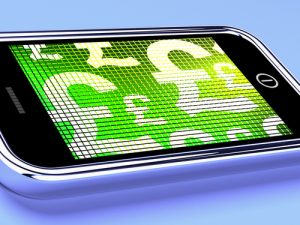 When I need to make a payment or send money to someone, I use a bank app on my smartphone. It’s quick and easy, and I can check my balance beforehand to make sure I’ve got enough cash in my account. The app does require me to know the other person’s bank details though, and so isn’t particularly handy for making swift payments to just anyone.
When I need to make a payment or send money to someone, I use a bank app on my smartphone. It’s quick and easy, and I can check my balance beforehand to make sure I’ve got enough cash in my account. The app does require me to know the other person’s bank details though, and so isn’t particularly handy for making swift payments to just anyone.Fortunately the Payments Council is working on a project that will make it possible for anyone living in the UK to send secure payments via text message. You won’t need to worry about account numbers or sort codes -- all you’ll need is the recipient’s mobile number.
Set to launch in spring next year, the aim of the scheme is to link up every bank account in the country with a mobile phone number that will work as a proxy, so neither the sender nor recipient will be required to disclose their bank details. Great for paying a workman, for example, or splitting a dinner bill with friends.
According to the Payments Council, just prior to launch, "participating financial institutions will invite customers to register via their online banking service, mobile app or other approved method to provide their mobile phone number and confirm which account they want to link it to". Apparently eight financial institutions -- representing 90 percent of UK current accounts -- have already committed to the new scheme.
Transactions will be handled by the Faster Payments service, which processed more than 800 million online and phone banking payments last year, and the LINK network, which processed 3.1 billion ATM transactions in the same time period.
There are still some details to be worked out, including defining minimum service standards for security, speed and other technical requirements. Security will of course be a major concern, and the Payments Council has said at the very least a passcode or similar security feature will be required to authorize payments. Which will be essential, especially given that the Metropolitan Police says an average of 314 mobile phones are stolen in London every day.
Photo credit: Stuart Miles/Shutterstock
-

IBM looks into the future: Says steampunk will be the next big thing
Publié: janvier 15, 2013, 3:41pm CET par Wayne Williams

IBM’s Social Sentiment Index is a tool designed to aggregate and gauge public opinion from a range of social media. It crunches its way through blogs, online forums, Facebook, Twitter and other social media postings, discovers what people are talking about, and then uses the results to predict the next big trends. That is, trends with actual staying power.
And the next big thing in clothing, furnishings and accessories? Steampunk apparently.
Yes, after building in popularity for some years, Big Blue says the neo-Victorian fad is about to break through into the mainstream, with top hats, frock coats, and corsets (for the ladies) taking over in fashion. Don’t even think of buying yourself a pair of Google Glass specs (when the technology eventually becomes available), if they’re not made of brass and leather and fashioned to look like welder goggles. Not unless you want to appear foolish.
 According to IBM, "The trajectory for steampunk as a popular social and cultural trend is on the rise. From 2009 to 2012 the amount of social media chatter about steampunk rose by an astonishing 11 times." The company predicts "the next two years will witness the shift from low production, high cost ‘craft’ manufacturing to mass production. Mainstream fashion labels, accessories and jewelry will all begin adopting a steampunk aesthetic. For retailers, this is the moment to start laying the groundwork to capitalize on this emerging trend".
According to IBM, "The trajectory for steampunk as a popular social and cultural trend is on the rise. From 2009 to 2012 the amount of social media chatter about steampunk rose by an astonishing 11 times." The company predicts "the next two years will witness the shift from low production, high cost ‘craft’ manufacturing to mass production. Mainstream fashion labels, accessories and jewelry will all begin adopting a steampunk aesthetic. For retailers, this is the moment to start laying the groundwork to capitalize on this emerging trend".To go with its prediction IBM has created an infographic full of interesting facts. Women apparently post 70 percent of steampunk tweets and 84 percent of Pinterest pins, and 63 percent of people talking about steampunk are under 30. It also charts steampunk’s rise to the mainstream from its literary origins in the 1800s to Prada’s men’s collection last year.
What do you think of IBM’s prediction? Will we all be dressed in steampunk gear and boarding zeppelins by the end of the year?
Photo credit: Nejron Photo /Shutterstock
-

232 years in the making, Ordnance Survey launches its first maps app for iOS
Publié: janvier 11, 2013, 1:55pm CET par Wayne Williams
 Shortly after Apple launched its disastrous maps app, Google’s CEO Larry Page made a comment regarding how it had taken Google seven years of hard work to get to where it’s at now. Seven years sounds like a long time, but it pales into insignificance when compared to the 232 years that British mapping agency Ordnance Survey has been making and refining its maps.
Shortly after Apple launched its disastrous maps app, Google’s CEO Larry Page made a comment regarding how it had taken Google seven years of hard work to get to where it’s at now. Seven years sounds like a long time, but it pales into insignificance when compared to the 232 years that British mapping agency Ordnance Survey has been making and refining its maps.It’s rather surprising that it’s taken this long for the OS to put its work on iOS, but the agency has at last come up with an official app. OS MapFinder isn’t a straight alternative to Google Maps or Apple Maps though. Rather, as Ordnance Survey puts it, the app is "aimed at walkers, ramblers, runners, cyclists and generally anyone looking to enjoy the outdoors".
The app lets users view, navigate and download up-to-date OS Landranger (1:50,000) and OS Explorer (1:25,000) maps of Great Britain in high-resolution. There’s no danger of getting lost with these, as the highly accurate maps have been produced using a team of 250 surveyors and two aircraft making an incredible 10,000+ changes to the mapping database every day.
Although the app itself is free, Ordnance Survey isn’t one to give its maps away for nothing, so users will need to pay to download more detailed data. A single 10km-by-10km tile at 660dpi costs 69p. You do get a free tile of Exeter but it’s probably not worth moving there just for that.
The data is cached on the device, so you can use it offline -- handy when taking a stroll in the Scottish Highlands, for example, where it might be tricky to get a 3G signal.
Users can search for locations by place name, postcode or Ordnance Survey Grid reference. You can record your own personal routes on your device (in real-time), plan routes and measure your times for each trip.
Launching the new app, Peter ter Haar, Director of Products said: "Ordnance Survey prides itself on generating accurate and up-to-date mapping data. Customers have been asking us to extend the ways they can access our detailed and trusted mapping to meet the demands of today’s digital lifestyle. We are delighted to be launching OS MapFinder to give consumers the most up-to-date mapping from just 69p. Customers will now be able to enjoy the same experience as using a trusted Ordnance Survey paper map when exploring Great Britain on the go, at the touch of a screen".
-

Google launches Chrome Beta channel for Android
Publié: janvier 11, 2013, 8:49am CET par Wayne Williams
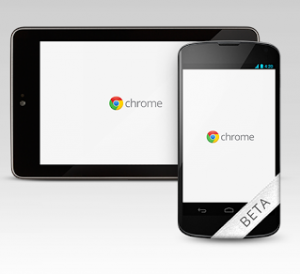 Users of Google’s popular desktop browser have a choice of release channels. If you hate bugs and crashes, there’s the stable version of the browser (which was just updated). If you don’t mind taking a little risk and want to get your hands on the newest features, there are the Beta and Dev channels. And finally, if you want to be on the absolute cutting edge, there’s the Canary build which runs alongside any other Chrome installs you have.
Users of Google’s popular desktop browser have a choice of release channels. If you hate bugs and crashes, there’s the stable version of the browser (which was just updated). If you don’t mind taking a little risk and want to get your hands on the newest features, there are the Beta and Dev channels. And finally, if you want to be on the absolute cutting edge, there’s the Canary build which runs alongside any other Chrome installs you have.Android users don’t have this degree of choice, but from today Google is offering a new Beta channel for phones and tablets running Android 4.0 and up, and the good news is it can be installed alongside your current version of Chrome so you’ll always have a stable version of the browser on hand.
According to Google, "Chrome for Android now benefits from all the speed, security and other improvements that have been landing on Chrome’s other platforms". The first Beta release includes improved Octane performance, and HTML5 features for developers.
You can grab the new version from the Google Play store now. You will need to use the link as the app can’t be found by simply searching for it.
-

Amazon’s AutoRip service gives CD purchasers the MP3 versions for free
Publié: janvier 10, 2013, 4:04pm CET par Wayne Williams
 If you’re one of those people who still prefers audio CDs to digital downloads (because you can’t beat a physical product with album art and sleeve notes, right?), but then rip the tracks so you can actually play them, Amazon’s new AutoRip service is for you. Purchase an AutoRip CD from the site and you’ll get the MP3 version for free.
If you’re one of those people who still prefers audio CDs to digital downloads (because you can’t beat a physical product with album art and sleeve notes, right?), but then rip the tracks so you can actually play them, Amazon’s new AutoRip service is for you. Purchase an AutoRip CD from the site and you’ll get the MP3 version for free.The tracks will be automatically uploaded to Amazon Cloud Player, where you can stream or download them immediately, even before the CD arrives. And that’s not all. Any eligible CDs you’ve purchased from Amazon after 1998 will be added to your Cloud Player too, for free. If you don’t have a Cloud Player account you’ll be able to sign up for one.
Eligible albums, of which there are already over 50,000 available to buy now, are marked with the AutoRip icon.
If you listen to your CD purchase and decide you don’t like it you can return it and get a full refund as you would normally, and the tracks will be deleted from your Cloud Player. If, however, you’ve downloaded any of the tracks in the meantime, Amazon will charge you for them at the MP3 price. Which sounds fair enough to me.
AutoRip is currently only available for US customers.
-

Microsoft launches the Windows Startup Challenge -- a competition for would-be app designers
Publié: janvier 10, 2013, 3:29pm CET par Wayne Williams
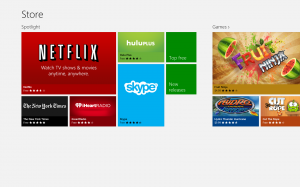 The problem with making apps -- whether for smartphones, tablets or the Windows Store -- is getting enough people to sit up and take notice. Sure, if it’s good enough, word of mouth might propel it upwards, but the sad truth is a lot of great apps never get the traction they need to succeed.
The problem with making apps -- whether for smartphones, tablets or the Windows Store -- is getting enough people to sit up and take notice. Sure, if it’s good enough, word of mouth might propel it upwards, but the sad truth is a lot of great apps never get the traction they need to succeed.If you have an idea for a Windows Store app, Microsoft’s Windows Startup Challenge could be just the boost your concept needs. The winner of the app design contest will get the chance to launch their creation at DEMO Mobile in San Francisco on 17 April.
The rules of the competition are straightforward. All you have to do is sign up between now and January 29 and submit an app prototype. It doesn’t have to actually be an app, it can be a video, a presentation, or some images. It just needs to meet the judging criteria.
You can go it alone, or as part of a team -- so long as the team has no more than five members and doesn’t include any Microsoft employees. The app must be new, and not have been previously submitted to the Windows Store, although it can be an app that’s already available on other platforms (like Android and iOS), provided it’s your app of course.
If your prototype makes it past that stage (50 percent of your app’s score will come from public votes), you’ll then have to actually build it, and quickly. Finished apps need to be submitted by March 1 and run on Windows 8 and RT.
The winning team (well, two of them anyway) will be flown to DEMO Mobile in San Francisco and given the chance to launch their app in front of the press, seed investors and VCs. The top runners up will receive marketing packages and design and technical support.
If that sounds like something that appeals, sign up now, and good luck.
-

Anonymous petitions the White House, wants DDoS recognized as a form of free speech
Publié: janvier 10, 2013, 1:37pm CET par Wayne Williams
 A Distributed Denial of Service attack is no different from someone repeatedly tapping F5 in their web browser, at least accordingly to loose hacktivist collective Anonymous. The group (or someone claiming to be affiliated with it at least) has added a petition to the White House's We the People website, asking the US government to recognize DDoS as a legal form of protesting, and comparing it to the international "occupy" movement.
A Distributed Denial of Service attack is no different from someone repeatedly tapping F5 in their web browser, at least accordingly to loose hacktivist collective Anonymous. The group (or someone claiming to be affiliated with it at least) has added a petition to the White House's We the People website, asking the US government to recognize DDoS as a legal form of protesting, and comparing it to the international "occupy" movement.The petition also calls for the immediate release of those who have been jailed for DDoS attacks, and for their records to be cleared.
According to the petition:
Distributed denial-of-service (DDoS), is not any form of hacking in any way. It is the equivalent of repeatedly hitting the refresh button on a webpage. It is, in that way, no different than any "occupy" protest. Instead of a group of people standing outside a building to occupy the area, they are having their computer occupy a website to slow (or deny) service of that particular website for a short time.
The logic of this argument is, of course, exceptionally wonky, and likening a DDoS attack to refreshing your browser is akin to comparing Niagara Falls with someone turning a bathroom tap on and off repeatedly. The latter approach might cause the basin to fill up, eventually, but it won’t smash houses to pieces, drown everyone on your street, and cost a fortune to clean up afterwards…
I must admit, however, I do rather like the idea of an organized protest whereby disgruntled citizens of the world go -- with synchronized precision -- to the website of a hated organization, and sit in their homes manually refreshing pages for hours on end, until they eventually get bored, or build up giant blisters on their fingertips.
The new petition requires 25,000 signatures by February 6 and has so far managed to garner just 843.
Photo Credit: arindambanerjee/Shutterstock
-

Play.com to shut down its retail business and become an eBay-style trading site
Publié: janvier 9, 2013, 2:25pm CET par Wayne Williams
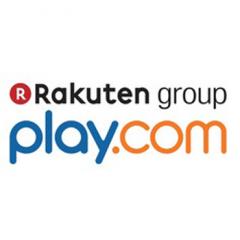 There was a time when Play.com looked set to rival Amazon in the UK. The online retailer, which focussed initially on selling DVDs, made a big splash when it launched in 1998 by offering its products for the same price as Amazon but, crucially, threw in postage for free, a move which made shopping there a lot cheaper overall.
There was a time when Play.com looked set to rival Amazon in the UK. The online retailer, which focussed initially on selling DVDs, made a big splash when it launched in 1998 by offering its products for the same price as Amazon but, crucially, threw in postage for free, a move which made shopping there a lot cheaper overall.However, time hasn’t been kind to Play.com. First it was sold to Japanese company Rakuten for just £25m in September 2011, and then the government closed a Jersey tax loophole that allowed retailers to avoid paying VAT (Value Added Tax) on items under £15. With Rakuten seemingly unwilling to back up its investment, Play.com limped on, but the writing was on the wall for the once great retailer.
Today the site has confirmed that it will cease retail trading from March 2013, and relaunch itself as a trading site along the lines of eBay. The closure of the retail business will see the loss of some 214 jobs, across its Jersey, Cambridge and Bristol operations.
As someone who shopped at Play.com for many years, the news is sad, but unsurprising given that the site had become a shadow of itself in recent months.
-

What is Facebook building?
Publié: janvier 9, 2013, 12:18pm CET par Wayne Williams
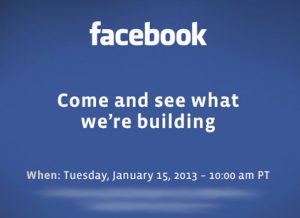 I like a good mystery. When Samsung teased us with ‘something new’ I wanted to know what it was (I’m still not entirely sure, to be honest, given Samsung announced so many products at CES). When Microsoft says it’s sold 60 million licenses I want to know how many of those were sold to consumers (Microsoft remains tight lipped).
I like a good mystery. When Samsung teased us with ‘something new’ I wanted to know what it was (I’m still not entirely sure, to be honest, given Samsung announced so many products at CES). When Microsoft says it’s sold 60 million licenses I want to know how many of those were sold to consumers (Microsoft remains tight lipped).And now a new mystery has arrived to pique my interest, this time courtesy of Facebook. The social network has sent out invitations to the press inviting us to a media event at its Menlo Park, Calif., headquarters on January 15 to "see what we're building". Since press events are rarely held at Facebook's corporate HQ, it’s likely to be something big.
There are no other clues on the invite, just that it starts at 10am PT and will likely go on for a few hours, seeing as Facebook says it intends to serve lunch afterwards.
So what could it be? Some people are guessing at the long rumored Facebook phone, but that remains unlikely. Improved search facilities is a possibility. It could be anything, really. Care to take a guess? All will be revealed next week.
-

BlueStacks brings over 750,000 Android apps to Lenovo PCs
Publié: janvier 7, 2013, 8:22pm CET par Wayne Williams
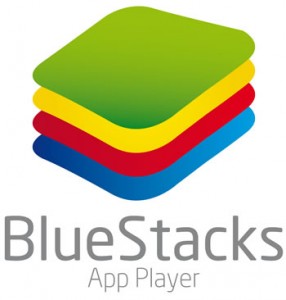 BlueStacks has been very busy lately, inking a series of deals with major partners to bring its App Player software to a much wider audience. The App Player, if you’re not familiar, virtualizes the Android environment and lets users download and run green droid apps on desktop and laptop computers. The company last year formed partnerships with Asus, MSI, and AMD, and at the end of December rolled out a beta version of its software for Macs. Today’s CES announcement is, however, easily the firm’s biggest coup to date.
BlueStacks has been very busy lately, inking a series of deals with major partners to bring its App Player software to a much wider audience. The App Player, if you’re not familiar, virtualizes the Android environment and lets users download and run green droid apps on desktop and laptop computers. The company last year formed partnerships with Asus, MSI, and AMD, and at the end of December rolled out a beta version of its software for Macs. Today’s CES announcement is, however, easily the firm’s biggest coup to date.China’s Lenovo, which late last year usurped HP as the world’s largest PC manufacturer, will start bundling the BlueStacks App Player on all of its Idea-branded line of consumer PCs, including Ideapad laptops and IdeaCentre desktops. A total of around 40 million systems.
This will mean anyone buying a new Lenovo PC will have access to over 750,000 Android apps, and thanks to BlueStacks’ cloud technology, be able to sync their favorite apps, data and SMS text messages between Lenovo computers and smartphones.
"As the PC market leader and a growing smartphone maker in China, it's huge that Lenovo is implementing our vision of creating a blended experience across smartphones, tablets and PCs," Rosen Sharma, CEO of BlueStacks, said.
Lenovo's VP of Worldwide Marketing was equally gushing, adding, "Innovation is vital to leading in the PC+ world, and we're winning by continuing to push the limits in both software and hardware. Our alliance with BlueStacks puts us in a unique position to offer the most popular games and apps on flagship PC products like the Horizon Table PC in order to give our customers engaging user experiences".
BlueStacks’ agreements with various partners means that more than 100 million PCs will come preloaded with its App Player software in 2013.
-

Blinking marvelous. Tobii REX lets you control Windows 8 with your eyeballs
Publié: janvier 7, 2013, 2:35pm CET par Wayne Williams
 Finding the app you want on Windows 8 -- by sight alone -- can at times feel like a really frustrating game of Where’s Wally. If your eyes are already flicking around the screen, it makes sense to use them as a control method, right? Well, that’s what Tobii thinks at least. The company is releasing a USB bar which attaches to the bottom of any monitor displaying Windows 8, and tracks your eye movements.
Finding the app you want on Windows 8 -- by sight alone -- can at times feel like a really frustrating game of Where’s Wally. If your eyes are already flicking around the screen, it makes sense to use them as a control method, right? Well, that’s what Tobii thinks at least. The company is releasing a USB bar which attaches to the bottom of any monitor displaying Windows 8, and tracks your eye movements.Due to be shown at CES, Tobii REX is described as the "world’s first Gaze interaction computer peripheral for the consumer market" and works in conjunction with touch, keyboard and mouse.
"We believe gaze interaction is going to be the next major advancement in mainstream computer interface," Henrik Eskilsson, CEO of Tobii Technology said. "Tobii has been driving innovations in eye tracking for more than a decade, and we are excited and honored to be able to bring this first integration of eye tracking into a product for tech-enthusiast consumers".
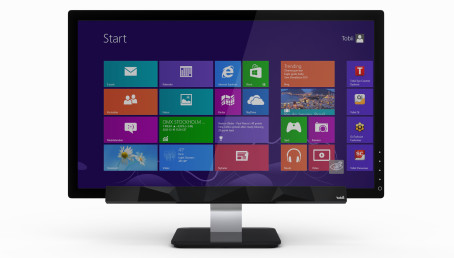 The way it works is pretty straightforward. You look at the app you want to launch, and then hit a button or tap your touchpad. The Gaze interaction technology can be used to select anything on screen. Hold down a button and look at an app, link, tab, or a place on a map, for example, and a circular cursor on screen shows where the tracker thinks you’re looking. Let go of the button to launch or go to the selected item.
The way it works is pretty straightforward. You look at the app you want to launch, and then hit a button or tap your touchpad. The Gaze interaction technology can be used to select anything on screen. Hold down a button and look at an app, link, tab, or a place on a map, for example, and a circular cursor on screen shows where the tracker thinks you’re looking. Let go of the button to launch or go to the selected item.Tobii will be producing an initial 5,000 unit run of Tobii REX, and expects to begin selling it in the fall (pre-orders start in Spring). Software houses and programmers can purchase a developer edition for $995.
Photo Credit: Linda Bucklin/Shutterstock
-

Goooaalll!! BBC launches new sports app for iOS
Publié: janvier 7, 2013, 10:10am CET par Wayne Williams
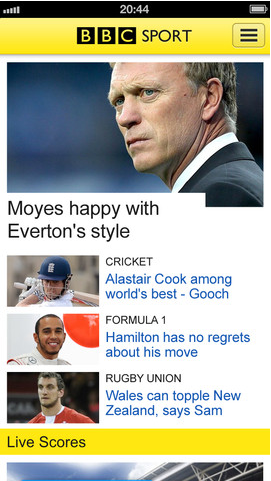 Following on from the success of last year’s hugely popular Olympics app, BBC Sport has released a new sports app for iOS, with an Android version to follow in the coming weeks.
Following on from the success of last year’s hugely popular Olympics app, BBC Sport has released a new sports app for iOS, with an Android version to follow in the coming weeks.The new app displays the headlines from the BBC Sport website, and lets you view the latest scores and results for all of the major sports, including football (soccer), rugby, cricket, tennis, and horse racing. The Quick Links button lets you select any of your favorite sports. Choose football, for example, and you’ll be able to view live scores, results, fixtures, and more. The app will also provide live text coverage of England's cricket Test matches, rugby union's Six Nations, and the forthcoming Formula 1 season.
There are no video highlights available at the moment, but this feature is planned for the future.
Lucie McLean, executive product manager for sport at BBC Future Media, said: "The new BBC Sport app builds on the success of London 2012 to give users an even easier way to get the content they love, whether it's checking out how their team got on, following live text updates on the day's sporting action or catching up with the latest news".
-

UC4: Web outages, like Amazon’s recent issues, can be predicted and avoided [Q&A]
Publié: janvier 4, 2013, 11:11am CET par Wayne Williams
 Problems at Amazon Web Services (AWS) caused a major Netflix service failure on Christmas Eve that affected a large portion of US and Canadian subscribers. "Terrible timing" Netflix tweeted as the scale of the problem became apparent. The outage in this case, Amazon said afterwards, was caused by human error -- a developer accidentally deleted some Elastic Load Balancer (ELB) data.
Problems at Amazon Web Services (AWS) caused a major Netflix service failure on Christmas Eve that affected a large portion of US and Canadian subscribers. "Terrible timing" Netflix tweeted as the scale of the problem became apparent. The outage in this case, Amazon said afterwards, was caused by human error -- a developer accidentally deleted some Elastic Load Balancer (ELB) data.This wasn’t the first high-profile web outage, and it certainly won’t be the last either, but as Randy Clark, UC4 Chief Marketing Officer explains, solutions like DevOps, WebOps and ITPA can all help to limit the problem.
BN: As the concept of DevOps moves more into the mainstream, can you tell me a little bit about what exactly this means in practice and what this development model aims to achieve?
RC: DevOps represents the intersection of software development and IT operations, and is a software development method that puts emphasis on the need for connectedness, collaboration, and integration between these two groups.
The goals of development teams and IT operations teams are often at odds. While development focuses on creating new applications or features as rapidly as possible, IT Operations is concerned with stability, and perceives change as high risk that often introduces unpredictability. There needs to be a reconciliation of the conflict between IT operations that care about the release process and are cautious of the deployment event, and the development teams who try to introduce as much innovation as quickly as possible. DevOps makes for a collaborative and effective environment for native Dev teams and native Ops team to co-exist and work productively with the interests of both parties at the forefront.
BN: We've recently seen some notable outages from companies like Amazon, United Airlines and others. What role does DevOps play in avoiding outages and helping to establish IT resiliency?
RC: Essential to avoiding outages is automatic rollback, which has been the holy grail of deployment automation for a long time. It guarantees your system will not be left unstable due to a botched upgrade process. And that’s the culprit for many of these high profile outages we’re seeing -- a rapid upgrade process, as dictated by constant consumer demands for the biggest, best and fastest service and functionality online. Automatic rollback, in a way, serves as a way to mend the conflict between Dev teams and Ops team, where Dev wants to rapidly push out new applications and features, while Ops takes a more cautious approach. Automatic rollback as part of DevOps makes for a deployment model that is flexible to meet the changing demands of application upgrades and fixes.
BN: What would you pinpoint as the cause for these kinds of outage caused glitches? Are there ways to work around, or perhaps to even predict, them?
RC: Business processes, applications and computing infrastructures are growing too intertwined and dependent on each other. These inter-dependencies, which represent potential breakage points, have become beyond human ability alone to manage, and IT organizations are now forced to deal with these new realities while Cloud, Big Data, and ITaaS pressures get added to the mix. With all these moving parts, it’s the process and process control that needs to act as the IT backbone.
The solution: IT process automation. ITPA keeps track of the complex inter-dependencies between applications, infrastructure and business workflows to help identify, and even predict and work around, problems before they occur.
BN: As more organizations adopt DevOps models to establish collaborative environments amongst Development teams and IT Operations teams, what are some of the pain points that still exist and how can businesses address them?
RC: The most effective way to reconcile speed and control is automation. And as application changes have brought about the biggest challenge in IT, so will automating the application delivery process, end-to-end fix the biggest challenge in DevOps. Application Release Automation (ARA) technology is the sure way forward in the transformation of the way Dev and Ops hand over applications between them and collaborate. ARA provides mechanisms for packaging software artifacts and tracking them between Dev and Ops, Visual automation workflows that Dev creates and Ops controls and a model that lets them collaborate effectively to deliver applications to production in a continuous way. ARA is the key to DevOps, as it fixes the biggest pain points in Dev and Ops collaboration.
BN: UC4 and CollabNet recently announced a partnership aimed at bringing to market the first scalable enterprise DevOps solution. What were some of the drivers behind this collaboration and what are the intended outcomes for people who implement the joint solution?
RC: The main driver behind our partnership with CollabNet was to essentially fill an unmet need to bring to market an enterprise DevOps solution at-scale. The joint offering provides the automation, scalability and governance enterprises need to bring development and IT Operations closer together to deliver software faster and reduce IT costs.
As DevOps and Continuous Delivery gain traction and adoption increases, IT organizations need strong governance, cross-team coordination and traceability to succeed and scale these initiatives across the enterprise. Our joint solution provides exactly that. Through a single-pane-of-glass interface, IT organizations can now automate and streamline the entire application development, build and deployment lifecycle to improve software agility, productivity and team collaboration.
BN: As more organizations are realizing the DevOps promise of reduced risk and improved deployment, in a rapidly changing IT operations landscape, what can we expect to see next?
RC: Though still nascent, WebOps is the new wave of the IT future. WebOps is a superset of DevOps. While DevOps handles strictly deployment, WebOps goes beyond that into managing the business activity of the application, ensuing proper infrastructure capacity for that process, automating systems software in general, such as CRM systems, database servers, and ERP systems. As TechTarget contributor Matt Heusser wrote after a discussion about WebOps with UC4 CEO, Jason Liu, "Given the increasing pressure companies are under to deploy more quickly with less risk, I have to say WebOps has a certain ring to it. Consider WebOps as an orchestrator for moving from enterprise DevOps to integrated cloud-enterprise application management. It could make moving the entire infrastructure to the cloud and automating it less scary".
Photo Credit: Igor Zh /Shutterstock
-

Ubuntu phone OS isn’t destined for greatness -- but that doesn’t matter
Publié: janvier 3, 2013, 5:11pm CET par Wayne Williams
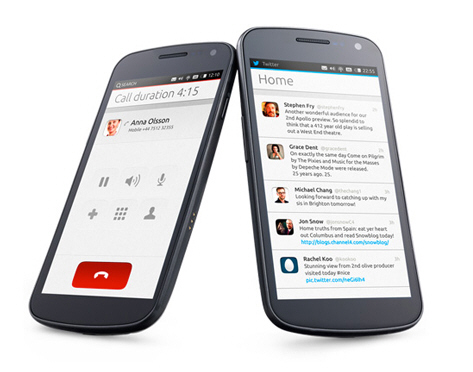 When all the hype about the new Ubuntu for phones OS dies down, we’ll be left with a void. Canonical admits it doesn’t currently have a manufacturer or an operator signed up, and it’ll be next year before the first device running the OS natively hits the market. And that’s a long time to wait.
When all the hype about the new Ubuntu for phones OS dies down, we’ll be left with a void. Canonical admits it doesn’t currently have a manufacturer or an operator signed up, and it’ll be next year before the first device running the OS natively hits the market. And that’s a long time to wait.By then, we’ll have seen new versions of Android and iOS, and Windows Phone 8 will likely be firmly entrenched in third place. If the market seems tough for Canonical to break into now, it’ll be far harder in 2014. But that doesn’t mean Ubuntu for phones can’t succeed. It will never make number one, but it doesn’t need to. It can carve out a pretty desirable niche in fourth or even fifth place, appealing to the Linux/Open Source crowd, and the users who don’t want the same phones as their parents and sheep-like peers.
Ubuntu on the desktop has a relatively small market share, but that doesn’t make it a bad OS, or a flop or a failure (in fact, quite the opposite -- it’s done a good job of bringing Linux to a more mainstream audience). If Ubuntu for phones can appeal to a similar sized percentage, it can survive. And if it can survive, it can thrive. Provided of course it doesn’t stumble headlong into a patent minefield…
Canonical’s CEO Jane Silber said of the new OS: "We expect Ubuntu to be popular in the enterprise market, enabling customers to provision a single secure device for all PC, thin client and phone functions," but I think that’s unlikely -- initially at least. Ubuntu for phones appeals, in the short term, more to the modders and the customizers. The OS reportedly runs well on cheap, low-spec devices, so it has an opportunity to do well in emerging markets like India too. I have a couple of old Android phones just sitting in a drawer in the kitchen, and Ubuntu could breathe welcome new life into at least one of those.
Android and iOS can confuse less savvy phone users. Having watched my aging father-in-law struggle to get to grips with his new Galaxy S III over Christmas, I see Ubuntu’s simple -- but not simplistic -- approach appealing to him. He won’t be using his smartphone as a PC, but the option to do so will certainly be attractive to a portion of users (myself included). By targeting both high-end and basic entry-level smartphones, Canonical is spreading its net as wide as possible, and that’s a very astute thing to do in such a tough market.
Ultimately, how well Ubuntu for phones does will depend on what hardware partners Canonical can land, but the new OS excites me, and provided it can get at least some decent developer traction early on, I can see it doing all right. And surely, in a market dominated by massive players like Apple, Google, and Microsoft, that’s good enough.
-

My New Year’s tech resolutions
Publié: décembre 31, 2012, 1:24pm CET par Wayne Williams
 Some years I make resolutions, others I don’t. The ones I make are usually the same -- lose weight and get fitter (something I finally achieved this year thanks to the Zombies, Run app), get that novel finished and land a book deal (another tick in the 2012 "done" box), and cut back on the amount of caffeine I consume (well, you can’t win them all).
Some years I make resolutions, others I don’t. The ones I make are usually the same -- lose weight and get fitter (something I finally achieved this year thanks to the Zombies, Run app), get that novel finished and land a book deal (another tick in the 2012 "done" box), and cut back on the amount of caffeine I consume (well, you can’t win them all).For 2013 I thought I’d make a short list of tech-related resolutions, things I genuinely plan to do or achieve, and share them with you. So, in no particular order, here they are:
Embrace Google+
There are simply too many social networks. Yes, you can use them all, but you can’t use them all properly. Not if you want time to do other things. I mostly just use Facebook, as it’s where all my friends are. I tweet a bit, but nowhere near as much as I did, and I pop into Google+ once or twice a week. I like Google’s site, but I just never really get as much out of it as I should. So in 2013 I plan to change that, and start using it more actively. Add and organize more friends, share more, comment more, complete my profile and even use Hangouts. I’ve started the process today with the following update: "In 2013 I plan to use Google+ more".
Change my passwords
This year I changed a lot of my passwords, and in 2013 I plan to do it all again, creating a list of difficult to guess logins for every site -- a minimum of 15 characters, with no duplicate passwords -- which will be challenging. I’ll use LastPass to help me remember the trickier ones. I’ll also make sure I'm using features like two-factor authentication where available.
Sort out my inbox
I’ve been using Gmail since it launched and although I’ve had the occasional major purge, my inbox is currently 79 per cent full (8GB). In 2013 I plan to archive everything and go through and delete as many messages as I can, and unsubscribe from any unwanted mailing lists. Of all my tech resolutions this is one I expect to fail on first, but I’ll give it a go at least.
Learn to love Windows 8
It seems the more I try to like Windows 8, the more I end up hating it, and I’m not sure why. My peers who use it as their primary OS all appear happy enough with it, and have made the transition smoothly. I just think it’s a bit of a half-baked mess and can’t seem to see beyond that. In 2013 that will change. In 2013 I will love Windows 8. Love it. I’ve even decided to upgrade my Windows Vista laptop to Windows 8 so I’m faced with the OS on two fronts. I’m also going to get rid of my Windows 7 dual boot. Maybe.
Watch out for a series of articles over the year in which I profess my love for Windows 8, and see if any of them come across as sincere.
Move to the cloud
I use a lot of cloud services, but I don’t use them as much as I should. I’m never going to move all of my data entirely online -- I’ll always want several local copies -- but I intend to make sure all of my most important data is backed up online at all times.
(Re)Learn to program
It’s been years since I’ve done any real programming and I’ve forgotten mostly everything I ever learned. I’m hoping my Raspberry Pi will help me re-discover my love of coding. And that I won’t just use it to play Minecraft.
So those are (some) of my tech-related New Year’s resolutions. What are yours? Leave your comments below.
Photo Credit: liseykina/Shutterstock
-

[Wayne] The tech I used most in 2012
Publié: décembre 28, 2012, 1:16pm CET par Wayne Williams
To paraphrase Ferris Bueller, "Technology moves pretty fast. If you don't stop and look around once in a while, you could miss it". Smartphones and tablets are being updated, iterated and replaced so quickly these days. Take the iPad. Apple rolled out a new version in March, and then replaced it with a faster model in November. You’re never at the cutting edge for long, so you need to enjoy that moment while you can (not that it really matters if your tech devices are a generation or two behind, of course -- so long as they work and do what you need them to).
My colleague Alan Buckingham wrote the first of the BetaNews team’s personal tech retrospectives yesterday. Now it’s my turn.
Browsers
Not much changed for me, browsers-wise in 2012, really. I’ve been using Firefox as my primary browser since the days when it was Firebird, and I've relied on Chrome as my secondary browser since it launched. I use Safari on iOS, just because it’s there. However, I have found myself using Chrome more and more. I recently added Google’s browser to my iPad, and I expect 2013 will be the year when I finally make Chrome my primary choice, purely for ease -- the ability to sync everything between browsers is a pretty big draw.
Apple devices
I used to own an iPhone. When I switched to the Samsung Galaxy S II (later replacing it with the S III), I wanted to still be able to access all of my favourite iOS apps, so I bought an iPod touch, then an iPad 2, then a newer iPod touch. This year, I replaced my iPad 2 with a 4th gen iPad -- which I love -- and updated all of the compatible devices to iOS 6 -- which I mostly like. There are elements of the new operating system I’m not keen on, Apple Maps being the obvious choice, but the card system in the App Store annoys the hell out of me too.
Windows 8
Like a lot of tech journalists, I made the switch to Microsoft’s new OS full time once it was released, having dipped in and out of the preview releases as and when required. I’m not a fan of Windows 8, but I’ve learned to tolerate it. I still have Windows 7 installed as a dual boot, but I rarely use it now. I do however, have Ex7ForW8 installed on Windows 8, and I use that more than I probably should.
Windows 8 has grown on me, and my short-lived experience with Surface made me like it just that little bit more. I think if I went all-in with a Windows 8 PC, Windows RT/Windows 8 Pro tablet, and Windows Phone 8, I’d enjoy the benefits immensely, but that’s never going to happen.
Ubuntu
I’ve always been an ad hoc Linux user. My job requires me to write about Windows -- the OS and the software I run on it -- so switching to another operating system full time is not a realistic proposition. I do enjoy Ubuntu though, and have it running on an aging laptop that I use, on average, once a week or so. I actually have two laptops -- as well as the Ubuntu one I have a second, slightly newer device running (you’ll like this) Windows Vista! I kept the original OS on it for work reasons, and never got around to upgrading. It will finally be swapped for either Windows 7/8 or Ubuntu in the next few days or so.
Samsung Galaxy S III
Although I like everything about my smartphone, the truth is I don’t use it as a phone all that much. The problem I have with it is I work in a basement office at home, and get a very poor signal. If someone calls me on my mobile, I have to hotfoot it upstairs or risk the call cutting out. Most people who call me know this, so usually contact me via other means -- landline, email, Skype/FaceTime.
Things I want to get in 2013
Although I can say what I want right now, it doesn’t necessary mean that’ll be the tech I get. There will likely be some good launches in the coming year, and I’ll no doubt covet one or more new devices over the tech choices currently available.
I’d definitely like a Kindle Paperwhite. Although I have a Kindle, I’d prefer a model that makes it easier for me to read in the dark. While I can, and do, read on my iPad, I prefer reading on an E Ink screen.
I’d also like a Windows 8 Pro Surface tablet. But I don’t think I’ll get one. Although I’d get a lot of use out it -- possibly even more use than I get out of my iPad -- I don’t think it’ll be enough to justify the cost.
I remain, as ever, tempted to get a MacBook and will likely upgrade my smartphone to a newer model, but haven’t decided if I want to go back to an iPhone, or upgrade to whatever new device Samsung rolls out.
I will, without question, finally be getting a Raspberry Pi.
Stay tuned for more posts from BN writers about what each of us used this past year and let us know in the comments below what tech you liked/disliked and used most throughout 2012.
Photo Credit: Wayne Williams
-

10 must-have apps for your new iPad
Publié: décembre 27, 2012, 1:55pm CET par Wayne Williams
If you received an iPad or an iPad mini for Christmas, the chances are you’ve already downloaded a fair few apps and are enjoying playing around with your new tablet. To help get you started, Apple’s created a "New to the App Store?" section which offers a curated selection of the best apps. There’s an "Essentials App Collections" area too, and you can also explore the "App Store Best of 2012".
Even with all this help from Apple you’ll still be faced with a somewhat bewildering array of choices, so to simplify things further, here’s a list of ten apps (paid and free) that I think are essential.
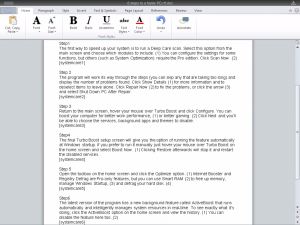 CloudOn (Free)
CloudOn (Free)If you plan on using your iPad for work purposes, you’ll need a good office tool and this is one of the best. It’s a free version of Microsoft Office that lets you create, edit and view documents, spreadsheets and presentations. You can sync it with various popular cloud storage services including Dropbox, Google Drive and SkyDrive.
Skype for iPad (Free)
The baked-in FaceTime is fine if you want to communicate with other people who own iOS devices, but Skype is a much better, more versatile option. It will let you video chat, voice call and send instant messages to anyone on Skype.
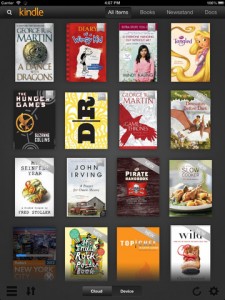 Kindle (Free)
Kindle (Free)The iPad can be great eBook reader (provided you’re not trying to read books in direct sunlight). Apple’s iBooks app is reasonable, but the Kindle app is a must have. You can buy and read books, magazines and newspapers directly from Amazon, and sync publications across devices, picking up where you left off on a PC, Mac or Kindle reader.
Instapaper ($3.99)
It’s much easier and comfortable to read a long article on your iPad than it is to read it on a PC or Mac. Instapaper lets you grab content from your browser, RSS Reader, Twitter client, Flipboard, and numerous other places, ready for reading on your iPad later. It pulls all the text and photos you need, but leaves adverts and other junk behind.
Google Drive or Dropbox (Free)
If you use either (or both) of these cloud storage services, installing the apps will give you access to all of your important files from anywhere. The Dropbox app limits you to uploading photos and videos.
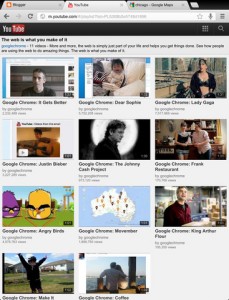 Google Chrome (Free)
Google Chrome (Free)Safari is a fine browser on iOS, but switching to Chrome has several great benefits. If you use it as the main browser on your PC or Mac, you can sign in and sync tabs, bookmarks, passwords and Omnibox data, and transfer pages from your computer to iPad for offline reading.
CloudMagic (Free)
If you read my recent Q&A with CloudMagic founder Rohit Nadhani you’ll know I’m a big fan of the cross-platform cloud search utility which lets you connect services like Gmail, Twitter, Facebook, Dropbox, and Google Calendar and then quickly find any email, post, or file across those services by typing a few letters into the search box. Once you’ve used it for any length of time, you’ll soon find it an essential app.
Facebook (Free)
Provided you haven’t decided to abandon Facebook, this is a great app for accessing the popular social network. The native implementation means it’s fast and fluid, and far better than the website.
Google Maps (Free)
If you intend to use your iPad for getting directions, or finding out about places around you, you'll need this. Yes, it’s an iPhone app, but don’t let that put you off. It's far superior to the woeful Apple Maps included in iOS 6.
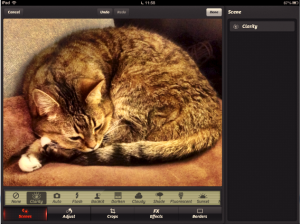 Camera+ ($0.99)
Camera+ ($0.99)I don’t take many photos with my iPad, because holding up a tablet to snap shots in public is frankly embarrassing. But what’s great about this app, aside from offering a decent range of editing tools, and filters (the Clarity filter is superb), is you can take photos on an iPhone, and, provided you turn on iCloud Lightbox Sync, they’ll appear on the iPad immediately, ready for editing and sharing.
-

Google provides direct access to Santa's Dashboard
Publié: décembre 24, 2012, 12:52pm CET par Wayne Williams
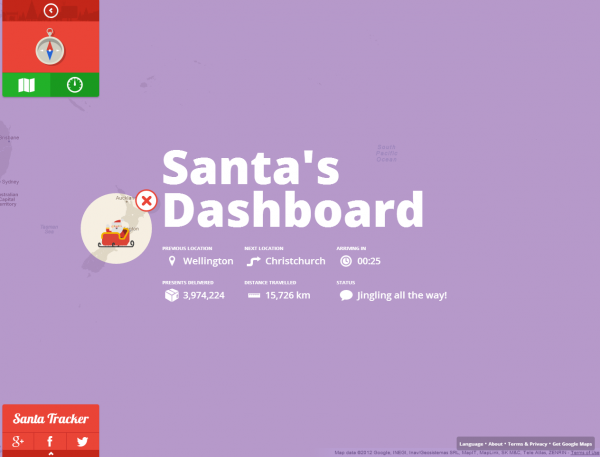 It’s a good thing Santa Claus doesn’t rely on Apple Maps to plan his route, or there would be a very unhappy bunch of children this Christmas. As it turns out, the bearded beneficent one uses Google Maps to make sure all of the presents he’s bringing to good little boys and girls get to the correct destination on time. He's not daft you know.
It’s a good thing Santa Claus doesn’t rely on Apple Maps to plan his route, or there would be a very unhappy bunch of children this Christmas. As it turns out, the bearded beneficent one uses Google Maps to make sure all of the presents he’s bringing to good little boys and girls get to the correct destination on time. He's not daft you know.If you’re not already tracking the progress of the big fat man with the long white beard using the Google Santa Tracker for Android or NORAD’s website, mobile or Windows 8 apps, there’s a new Santa’s Dashboard site from Google which will provide up to the minute details of where he is at the moment. This shows Santa’s previous location, his next location, when he’s likely to arrive there, the number of presents delivered, the distance travelled, and his status. There’s also a compass, and a list of names of deserving children.
You can switch from the dashboard to the map view, which will show you Santa’s current position. You’ll still be able to see all the relevant details (his location, distance travelled and so on) in a bar at the side.
Destinations can be clicked, so you can see the time of arrival, weather, number of presents to be delivered, and view photos and Wikipedia information about the place. There are also games you can play, such as Present Drop and Jetpack.
According to Google, "Santa’s dashboard -- featuring the latest and greatest in Google Maps technology and sleigh engineering -- will allow you to follow his progress around the world, and also learn a little about some of his stops along the way".
-

An iPad lover’s review of Microsoft Surface -- you know what’s coming, right?
Publié: décembre 21, 2012, 12:34pm CET par Wayne Williams
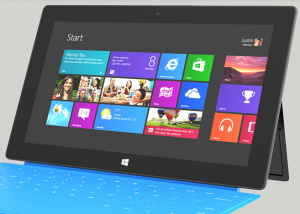 Arriving far too late to influence any gift buying for Christmas, here’s my review of Surface with Windows RT. The tardiness of the review isn’t really my fault. Microsoft only put its device in proper shops in the UK last Friday, and I wanted to include the shopping experience as part of the article (even though I didn’t actually spend my own money -- a friend purchased the tablet I’m reviewing).
Arriving far too late to influence any gift buying for Christmas, here’s my review of Surface with Windows RT. The tardiness of the review isn’t really my fault. Microsoft only put its device in proper shops in the UK last Friday, and I wanted to include the shopping experience as part of the article (even though I didn’t actually spend my own money -- a friend purchased the tablet I’m reviewing).Before we get into the review, I need to preface it by saying the following: I love Apple’s iPad. I bought an iPad 2 as soon as it was released and replaced it with the new 4th gen model a month or so ago. And even though I use Windows 8 daily, I really don’t like the new OS all that much. So, inevitably, I’m going to hate Surface, right? Absolutely loath it. Well, that’s what I thought. But surprisingly I like it. I like it a lot.
Let’s start at the beginning. My friend, Chris, told me he was thinking of buying Microsoft Surface. I wanted to review it, so we struck a bargain. In exchange for my doing a little free Photoshop work for him, he would let me have his new tablet for one week. Clearly I got the better deal.
In the UK, the John Lewis department store has just started selling Surface RT. There’s been a lot of press about it, so I expected a big display in the massive store we visited. There were two large tables filled with tablets. One was devoted exclusively to the iPad and iPad mini, and the other had every other tablet that John Lewis stocks. We found Surface there. Just the one display model, sitting alone and unloved next to an uninviting cardboard sign.
We watched people come and go over the course of about an hour. The device had a fair few curious visitors, but no buyers. The iPad display, a few feet away, was predictably a lot busier. Two people bought iPad Minis in the time we were there. Chris paid for his Surface and, like a surrogate mother who’s just given birth, gave the device straight to me, to reduce the temptation to keep it.
The review
Surface isn’t, it has to be said, a particularly attractive tablet. It lacks the aesthetics of the iPad. It’s fat and bulky (although it’s actually no thicker than the iPad), and when powered off it looks remarkably like an old digital photo frame I once owned. Turned on, with Windows RT showing, it looks like a monitor that Wayne Szalinski’s accidentally reduced in size with his electromagnetic shrink ray. This impression is of course down to the fact that I’m used to seeing the Windows 8 interface on a much, much larger display.
The device packs a selection of ports. As well as the volume rocker and headphone jack there’s a Micro-HDMI video output and USB 2.0 socket, and charging connector. Stereo speakers are located at the top of the device, on the left and right edges.
Although Surface’s screen resolution is just 1366 x 768 (148ppi), compared to the iPad 4’s 2048 x 1536 (264ppi) it looks absolutely fine to my eyes. Not as clear as the retina display, but it’s certainly given me no cause for complaint.
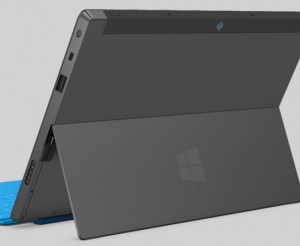 Holding Surface for the first time, I was struck by its weight. Compared to the iPad it feels very heavy, particularly when held in landscape mode. Which is odd, seeing as there’s no major difference between them -- the iPad weighs 1.44lbs and Surface is 1.46lbs. Surface doesn’t sit comfortably in one, or really two hands, although the magnesium back does make it easy to grip. Fortunately, the built-in kickstand means you can just put it down when you need to. And when you do, it sits at a good angle, great for watching video, displaying photos, and Skyping (the front camera points at you, the rear camera provides a good view of what’s happening behind it). Underneath the kickstand you can see the capacity of your device (64GB in this case) and there’s a microSD card slot for expanding Surface’s capacity further.
Holding Surface for the first time, I was struck by its weight. Compared to the iPad it feels very heavy, particularly when held in landscape mode. Which is odd, seeing as there’s no major difference between them -- the iPad weighs 1.44lbs and Surface is 1.46lbs. Surface doesn’t sit comfortably in one, or really two hands, although the magnesium back does make it easy to grip. Fortunately, the built-in kickstand means you can just put it down when you need to. And when you do, it sits at a good angle, great for watching video, displaying photos, and Skyping (the front camera points at you, the rear camera provides a good view of what’s happening behind it). Underneath the kickstand you can see the capacity of your device (64GB in this case) and there’s a microSD card slot for expanding Surface’s capacity further.Once you’ve attached the magnetic keyboard (Chris went for a Touch Cover, rather a Type Cover) you’ll realize the screen is also at the perfect angle for typing. The keyboard clicks on easily and -- even if you attempt to deliberately attach it some strange way -- accurately, every time. Because typing on the rubbery Touch Cover keyboard feels weird (the keys don’t move) Microsoft has said it takes five days to learn how to type properly. I’d say a day or two, if you really persevere. Although I’d rather have the Type keyboard, I suspect the additional bulk of it might become an issue in time and have me questioning if I might not be better off with a netbook.
Initially, because I couldn’t be bothered to read any instructions, and hadn’t paid enough attention to other reviews, I didn’t realize there was a button on the frame. I looked for a recessed iPad style-home button, couldn’t find one, and assumed its absence was a crazy Microsoft design decision. It turns out the Windows logo on the bottom of the frame is a capacitive button. I had a major eureka moment when I found it, and then promptly felt rather stupid for not realizing that’s what it was sooner. I know, I know.
One big niggle I encountered early on with the device is portrait mode. Surface, when held this way, just feels wrong. The kickstand and keyboards don’t work like this and the button is in the wrong place. And because it’s capacitive, it’s too easy to accidentally catch with your thumb. I often use my iPad in portrait orientation, but Surface feels as if it was designed specifically to discourage this kind of crazy behavior.
The tablet is powered by a quad-core NVIDIA Tegra 3 ARM Cortex-A9 processor, running at 1.3GHz, backed up with 2GB of memory and a GeForce ULP GPU, so it’s nippy enough. I didn’t really put it under any real stress -- just watched some videos, played a few games -- but it handled everything without problem.
The device’s battery life is passable, but the iPad’s is far superior. Or at least that seemed the case in my wholly unscientific tests (use both a fair bit and see which one needs charging first – Surface).
One of the things I know people have complained about with Surface is the quality of the images produced by the cameras which are designed for 720p video. And yes, they are poor. Certainly when compared to snaps produced using my iPad. The first few photos I took were so bad I thought I was going to have to tell Chris his tablet was defective. The front camera is absolutely fine for Skype, but you wouldn’t want to use either camera for taking photos. Use your mobile for that purpose instead. It will likely produce better snaps and you won’t get arm ache from carrying Surface around and lifting it up to frame your pictures. The quality of the photos isn’t a deal breaker for me though, as I pretty much never take shots with my iPad, because doing so in public makes me feel like an idiot.
Windows RT
On to the software. RT is of course a cut down version of Windows 8. Which means alongside the interface formerly known as Metro it has an odd desktop function that’s used for MS Office and Windows Explorer, and there are typical Windows features you wouldn’t expect to see on a tablet, like a working Command Prompt and Regedit.
RT on Surface feels snappy, responds beautifully to touch, and all the things I don’t like about Windows 8 don’t matter here. It works well. There are times when elements of the interface are a little too small for anyone with adult fingers, but overall it’s fine. The live tiles, which I don’t find all that appealing on my Windows 8 PC, I actually like on Surface.
Everyone knows the Windows Store is lacking in apps at the moment, so I won’t dwell on that. The situation is a lot better than it was at launch, and it will continue to improve. As an iPad owner I have to admit I felt more than a little embarrassed when I went into the Windows Store and looked at the paucity of apps on offer. But like I say, I won’t dwell on it. The apps I did download and try varied wildly in quality, but that’s not Microsoft’s fault.
Verdict
Initially I didn’t really like Surface. I expected to hate it, and I think that colored my view from the start. It felt bulky and awkward compared to my iPad, with design choices that irked and frustrated. But overtime I began to warm to it. The thing I realized on day two, was Surface shouldn’t be compared to the iPad. They are two very different beasts. My iPad I use for fun things, like watching video, playing games, browsing the web, and so on, but Surface quickly became the device I turned to for work. On the iPad I use iA Writer and CloudOn for writing, but being able to use a full version of Microsoft Word 2013 in Surface is a major plus. I soon found myself using Surface more than my iPad, although a large part of that was down to the fact the device was new to me (honeymoon period and all that), and I knew I only had it for a limited time.
Surface interfaces with my main PC beautifully. It works well as an additional display, thanks to that built-in Micro-HDMI port. The tablet includes Remote Desktop so I can connect to my host PC with ease. And of course by logging into my account on both my PC and my tablet, I can sync data, and use SkyDrive to copy content. The USB 2.0 port lets me plug in an external hard disk or flash drive, and that’s incredibly handy. Surface can be connected to a HomeGroup too – again very useful.
I love that I can share Surface with other people. They can create their own accounts and use an Xbox Live or Microsoft ID and get customized settings and files, which is great. My wife is forever moving apps around on the iPad, an annoying habit that I don't have to worry about on Surface.
And while I certainly don’t miss Flash on my iPad, the fact that Surface comes with the add-on built into Internet Explorer (albeit only for approved websites) is a small plus as well.
I really appreciate RT’s ability to split the screen too, so I can view my email while browsing the web for example. That feature became very useful, very quickly.
If I had to choose between buying an iPad or Microsoft Surface, I’d be torn. For apps and portability, I’d still go with the iPad, but for work purposes, and just using at home with the occasional trip out, Surface definitely appeals. I probably wouldn’t buy one right now, not until the ecosystem has more apps to offer, and I’d likely wait and get the full Windows 8 Pro version, but the fact that I – an iPad devotee – am even considering the idea speaks volumes.
When I have to give Surface back, which is very soon, I shall miss it. Really miss it. And that’s a sentence I never thought I’d ever write.
-

IBM: Intranet 2.0 can streamline business processes and foster innovation [Q&A]
Publié: décembre 20, 2012, 12:42pm CET par Wayne Williams
CMOs and CIOs frequently deal with outdated, legacy intranets that lack the interaction and functionality characteristic of Web 2.0 platforms. It’s no wonder that the intranet has frequently been pronounced dead by industry experts and reporters alike.
But according to IBM, the intranet isn’t dead, only evolving into what the firm calls Intranet 2.0, a new platform that combines social capabilities, data collection and a dynamic infrastructure to help business leaders create a smarter, more effective workforce. I discussed this transition with Larry Bowden, IBM’s Vice President of Portals and Web Experience.
BN: Tell me about IBM’s own intranet transformation into the people-centric IBM workplace.
LB: Cult
 ure plays a huge role in the success of an organization’s intranet. A culture that doesn’t naturally share information can present a major challenge in creating an intranet that people will use and support. Many organizations find it helpful to have a champion or adoption ambassador -- particularly one in a leadership position -- to propel a culture of sharing.
ure plays a huge role in the success of an organization’s intranet. A culture that doesn’t naturally share information can present a major challenge in creating an intranet that people will use and support. Many organizations find it helpful to have a champion or adoption ambassador -- particularly one in a leadership position -- to propel a culture of sharing.With IBM specifically, our employees understood and embraced the change quickly because our executive team was behind the end-goal; they knew that having a robust, collaborative intranet was critical to our future success, and this message was communicated across the board.
Electrolux is another great example of a successful social business transformation. The company employs 58,000 people across 60 countries, so there are challenges to using traditional modes of communication like email and phone. By harnessing the power of social tools, Electrolux employees are bridging cultural barriers and sharing a wealth of knowledge, spurring product innovation. Today over 16,000 employees are using Electrolux's intranet, 9,000 are using it daily to get their job done.
BN: IBM recently introduced the IBM Intranet Experience Suite. What’s its aim and how can it help employees?
LB: In a nutshell, the IBM Intranet Experience suite combines social software, content and collaboration tools to provide a seamless web experience for employees. Recognizing the proliferation of mobile devices in the workplace, the suite extends the reach of an organization’s intranet to allow mobile access as well. Employees can more effectively engage across networks and business units, and access information from external and internal news feeds.
The Intranet Experience suite also gives CIOs access to invaluable data, pulling together company information, personalized content and news, and social media analytics. CIOs can use this data to evolve internal operations and communications.
 BN: Let's talk a little bit about the evolution of intranets and where they are today. How are they becoming infused with social, and what is its effect on the workforce?
BN: Let's talk a little bit about the evolution of intranets and where they are today. How are they becoming infused with social, and what is its effect on the workforce? LB: In its early days, intranets held a shallow amount of information and content. The HR team would include benefits information and the vacation calendar and IT might have their technology use policy posted. The intranet was static and the framework didn’t allow for employees to use it as a collaborative tool. The intranet then evolved to connect employees to the applications they use every day -- CRM, databases, payment systems, etc. Organizations began using the intranet for document management, making it a valuable resource for information. But while intranets provided more information than ever before, they still lacked depth.
Now, we’re seeing organizations use the intranet as a collaborative tool for streamlining business processes and fostering innovation. Once fully integrated, the intranet evolves from simply a place to get information to the primary platform from which business is conducted. The organization and its employees come to view the intranet as fundamental to the operation of business.
BN: Gartner reports that 70 percent of social implementations fail because they lack a business purpose. How do companies avoid falling into this trap?
LB: Organizations often establish new goals with the implementation of a social intranet. They look to measure activity -- the number of posts, documents and wikis; the amount of time spent on pages; the number of visits over a certain amount of time. While these are great numbers to present at meetings to indicate increased collaboration, they don’t actually show the effectiveness of the intranet.
The far more effective way is to measure the intranet against how well it’s helping an organization meet already established business goals. For example, Cemex, a global manufacturer of building materials, reduced time spent on new product development by a third through their collaborative initiatives. When you can show how these social technologies are meeting existing metrics and driving business forward, you generate real excitement and interest, from the executive to the execution level.
BN: How are activity streams in the intranet different from, say, Facebook’s news feed?
LB: The activity stream in the intranet is personalized to each individual. Employees see updates and actions from people they follow and interact with within their team, project or community. This gives employees an awareness of what’s going on around them, related to their work or role within the organization, increasing the opportunity for collaboration. It’s no longer left to serendipity or guesswork for the right people to end up on the right project. The intranet activity stream does it for you.
BN: In what ways can a social intranet interact with external social media?
LB: The most effective way to integrate external social media with a social intranet is to treat the intranet as your main hub for both internal and external social media. For example, IBM Connections allows you to add Twitter search widgets, integrate directly with iTunes or look up addresses via Google Maps.
With the Twitter widget, users can specify hashtags they want to monitor, and it updates in real-time. Teams can use this information to help with anything from research on a specific topic or monitoring conversations around a product launch.
BN: What are the best ways for businesses to manage intranet social media usage? How can firms encourage more participation?
LB: Organizations are already great at being a social business from an external perspective. We’ve mastered blogging, using Twitter for customer service, creating vibrant Facebook communities. The next step is making that transformation internally. Once an organization makes this leap and practices social business externally and internally, the tools provided to enhance collaboration and innovation, such as the social intranet, become a natural part of conducting business.
That internal transformation is often overlooked as a crucial step toward social business. Yet not only does having an internal social business system make businesses more effective at the external level, it’s often critical for a company’s long-term social business success. External social business alone, without an internal social business component, will not transform the business culture.
BN: What are some of the challenges management is facing with transitioning to a social intranet?
LB: We recently released a report, "The Business of Social Business: What Works and How It’s Done," that speaks to some of the challenges management is facing. While companies are increasingly investing in social technology, middle management leaders are having trouble integrating and embracing these technologies into their daily work lives.
The study revealed that 46 percent of surveyed organizations increased their investments in social technologies in 2012. However, only 22 percent believed that managers are prepared to incorporate social tools and approaches into their daily practices.
The way to rectify this is to embed social technologies into core business processes. First and foremost, executive management must provide an infrastructure for engagement. The intranet must be robust with information and collaborative tools. Second, social practices should be integrated into day-to-day processes, from booking meetings to running entire projects -- with executive management setting the example. Lastly, management must teach employees how to collaborate effectively with individuals outside of the organization’s boundaries, using social business methods and tools.
BN: There’s an increasing desire for people to connect via mobile devices. How are companies managing this?
LB: Today’s workforce and client base now view mobility as mission critical to their daily productivity. That means organizations must not only meet those growing demands, but also protect client data and keep costs in check. It’s no longer an item for the wish list. Enabling collaborative tools for a mobile workforce is a necessity. Tools like IBM’s WebSphere Portal allow companies to give their employees access to information from anywhere. The Connections mobile app and Notes Traveler also help organizations stay collaborative on the go. Through the Connections mobile app, employees can use their iOS, Android or BlackBerry device to access blogs, employee data, status updates, wikis, videos and photos. Notes Traveler provides access to email, calendar, address book, journal, and to-do lists. These kinds of tools enable a more mobile workforce without decreasing productivity.
-

Be the first to try SlimImage, a new PC backup and versioning tool [BetaNews Exclusive]
Publié: décembre 19, 2012, 12:42pm CET par Wayne Williams
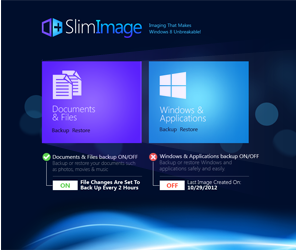 SlimWare Utilities, makers of SlimCleaner, is hosting a special-access beta for its newest software product, SlimImage, and BetaNews readers are invited to be among the first to try it out.
SlimWare Utilities, makers of SlimCleaner, is hosting a special-access beta for its newest software product, SlimImage, and BetaNews readers are invited to be among the first to try it out.SlimImage integrates directly with Windows 8 to preserve and safeguard a computer’s operating system, applications, files and documents independently. SlimImage is like a time machine for Windows 8 devices, incrementally backing up personal documents and files through versioning, while simultaneously, but separately, imaging the Windows 8 operating system and installed applications. In this way, SlimImage solves the problem of users losing data and personal documents when reinstalling their operating system in order to correct a system malfunction or crash.
Right now, BetaNews readers can sign up for this special-access beta by clicking here and using the code BETANEWS to download the app. This beta version will be available for a limited time before SlimWare releases the final version to the general public.
By separating the layers of a PC’s software stack and combining embedded versioning and imaging technologies, SlimImage overcomes limitations of other current PC backup products. SlimImage images the core components of a PC’s operating system, middleware, and applications, while versioning personal documents and data incrementally. This segmentation allows users to revert to a fresh install of Windows 8 with all documents and personal files intact, without losing any work completed to that point. Conversely, by allowing users to revert to a previous version of a specific file without touching the software installed on the user’s machine, SlimImage also allows users to retrieve important information that could have been lost forever using other methods available today.
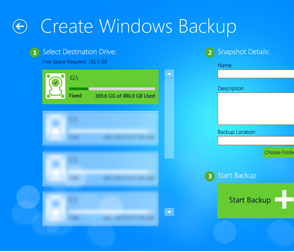 SlimImage will work on any device running Windows 8 (not RT) and maintains its dual purpose in two main user interface tiles:
SlimImage will work on any device running Windows 8 (not RT) and maintains its dual purpose in two main user interface tiles:Windows and Applications: This tile provides unlimited Windows 8 operating system recovery and refresh, including all system files and installed software, in a matter of minutes with no data loss. Only the Windows 8 operating system and applications are imaged and refreshed: all video, music, personal documents and files are saved separately from Windows and thus remain intact. Accordingly, if a system crashes, or is corrupted by bad software, SlimImage can restore Windows to its original or imaged state, the way it was before the crash or corruption, while keeping all personal documents untouched and intact. These images can be stored locally as well as externally, on network storage devices, or on other computers.
Files and Documents: This tile offers incremental backup of personal files and documents, including music, videos and photos. Users can save their documents and files to an external drive, to another PC or to a networked drive or computer. SlimImage uses versioning to save incremental changes to documents and files to preserve data separately from Windows, so that personal documents and files are retrievable from any point in time from any configured storage medium.
Some of SlimImage’s key features include:
- Automated, unlimited backup scheduling: Independent Imaging configurations for Windows and Applications, and for File and Document versioning.
- Backup to primary as well as external, removable or networked storage or devices.
- Seamless integration with devices running Windows 8.
- Management of multiple images with name, date, description, backup size, and frequency.
- Ability to schedule -- and specify the location of -- automatic backups.
- Fast reinstalls: Backup images are small enough to be stored on tablets, notebooks, ultrabooks and other Windows devices, making it easy and fast to reinstall Windows and applications.
- Ability to set the maximum number of snapshots to keep and to set parameters for file versioning.
- Automatic purging of outdated snapshots.
- Modern Windows 8 touch--style interface that’s easy to use, and works well with touch as well as with point and click.
Leave feedback, recommendations and report issues at SlimWare Utilities forum, or in the comments below.
-

CloudMagic wants to be the gateway for all your personal data [Q&A]
Publié: décembre 19, 2012, 12:12pm CET par Wayne Williams
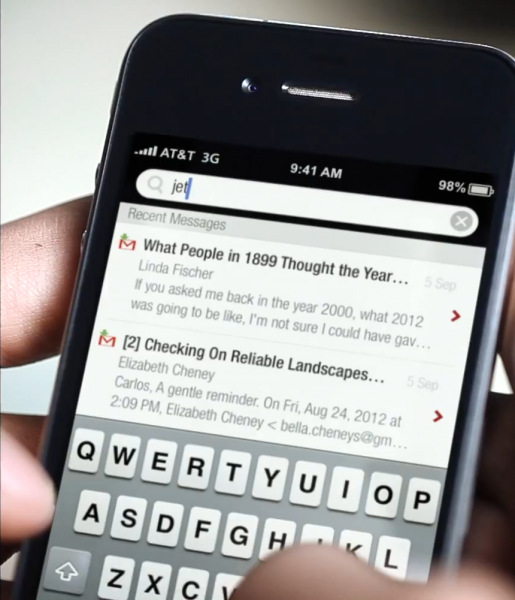 CloudMagic is a superb search tool that sadly doesn’t get the attention it fully deserves. If you’ve ever complained about how long it takes Google to find a certain message in Gmail, or have wasted far too much time trying to track down a particular tweet or Facebook status update, this is the solution you need (full disclosure: I’m a massive fan and couldn’t imagine life without it).
CloudMagic is a superb search tool that sadly doesn’t get the attention it fully deserves. If you’ve ever complained about how long it takes Google to find a certain message in Gmail, or have wasted far too much time trying to track down a particular tweet or Facebook status update, this is the solution you need (full disclosure: I’m a massive fan and couldn’t imagine life without it).I spoke to co-founder Rohit Nadhani about his product, how it began, and the company’s plans for the future.
BN: For the benefit of readers who may not be familiar with CloudMagic, can you tell us a bit about it?RN: In a nutshell, CloudMagic lets you view, search and act on your data (email, social, contacts, calendar, files, etc.) scattered across various services -- from multiple devices. Just as Google is the gateway to the World Wide Web, CloudMagic aspires to be the single gateway to all your personal data.
BN: It started life as a browser extension for Gmail, but now offers support for loads of other services including, most recently, Facebook, Dropbox, and iCloud. Was it always the plan to support so many services?
RN: We started as a browser extension because we were getting frustrated with the inability of Google Desktop search and Spotlight to search cloud data -- especially when more and more of our personal data was moving to the cloud.
We started by creating a high performance index on the local hard-disk. Users loved the functionality. They wanted the same functionality on their mobile devices and they wanted us to support more services. Therefore, we moved the index to the cloud and started working on more services.
BN: How many services do you currently support?
RN: Google Services (Gmail, Contacts, Calendar, Docs), MS Exchange (Mails, Calendar, Contacts), Twitter, iCloud, Dropbox, Evernote, Box, Yahoo Mail, AOL Mail, GMX, Mail.com.
BN: What other services do you plan to add in the future?
RN: SkyDrive, ActiveSync, Hotmail, MSN, SugarSync, Pocket, and Instapaper are extremely popular requests and we are working on it.
BN: Google is obviously the master of search, but you’ve previously said that you don’t think it, or Apple, or Microsoft will win the personal search market, why?
RN: Apple, Google and Microsoft control the platforms and they will definitely add improved search as a "feature" for their own services. However they are intensely competing with each other on most categories and they are never going to provide true value-add on services from other vendors.
Let’s take a slightly convoluted example: Do you think Apple will release an Android app that will provide high quality experience for Hotmail accounts? Of course not. In fact, just the other day Google announced it was dropping support for Microsoft Exchange ActiveSync.
Only independent vendors can deliver the best integrated experience across all services. CloudMagic is like Switzerland. We’re neutral.
BN: Greplin (Cue) was working on a similar tool, but it didn’t work out. Why do you think that was?
RN: First and foremost, the Greplin team is great and we have a lot of respect for them. I think Cue is a great idea and there is a huge opportunity for an "automatic" calendar. I don't know the exact reason why they pivoted. Maybe they raised VC very early on, and they were expected to grow much faster than they actually did.
We continue to be big believers in the personal data management category and we are executing aggressively in that direction.
BN: You’ve released apps for all of the major mobile platforms and extensions for the major browsers. Do you have plans for native apps for computers, and tablets like Surface?
RN: Yes. We are working on native apps for all major platforms. We want to be a complete replacement for Windows Desktop search and Spotlight.
BN: What’s the eventual goal for CloudMagic?
RN: To become the single gateway and workspace for all your data scattered across multiple services.
BN: CloudMagic is currently free -- any plans to charge for it? How will you make money?
RN: We are introducing a freemium plan in the next few weeks. Basic usage is going to stay free. Power users will pay a nominal monthly fee.
BN: A lot of personal search engines store the search index locally, but that doesn’t really work in the Post-PC world. What’s your view?
RN: We have been thinking about this category for a few years and came to the conclusion that having a local index on phones/tablets will never work. Firstly, iOS does not give you the ability to execute complex background tasks like downloading gigs of data from online services.
Even if complex background tasks were possible in Android, it would take away precious storage space on the device, drain your battery and completely destroy your data plans! Lastly, users on MacBook Air (which has low processing power) don't like background sync tasks as it slows down their MacBooks.
Cloud based aggregators like CloudMagic do all the heavy lifting on the servers giving users a lightweight and snappy experience.
BN: Gmail introduced us to the idea of searching for messages, rather than sorting, but even now people still label and star emails to make them easier to find. Do you think we’ll ever just rely on search?
RN: While labels/folders/starring might work for a short period of time, eventually any system of organizing your data will fail, for 2 reasons:
1) Because your context will switch every few months. A folder structure created today is irrelevant to you every few months.
2) Because most humans are not disciplined about it. There will come a week when something is far more important to you than organizing your emails, and you'd stop organizing it forever after that.
Also, precious time has been wasted in creating and maintaining your labels/folders. This therefore creates further disorganization of data because now you have labels/folders that you don't really use, so half your data is in your inbox and the other half has labels.
BN: Obviously your service indexes a user’s data and stores it on CloudMagic’s servers, which may concern some users. How secure is CloudMagic?
RN: There are 2 things:
1) We have very straightforward privacy policy.
2) We are building CloudMagic to be a clean productivity tool without social or sharing aspects (like Evernote). If you are a power user, pay us a monthly fee. We are not going to make money off your data, ever.
-

'Help! I’m trapped in a fire!' London Fire Brigade considering allowing people to tweet emergencies
Publié: décembre 18, 2012, 3:19pm CET par Wayne Williams
 I'll be honest, if I'm ever faced with an emergency such as my house catching alight, my first thought won't be to tweet about it. Neither will I be sending emails or texting anyone. I’ll be phoning the emergency services and speaking to someone. At least that way I’ll know the message has got through. But times change, and maybe using social media will soon become another accepted way to alert the authorities to non-life threatening situations.
I'll be honest, if I'm ever faced with an emergency such as my house catching alight, my first thought won't be to tweet about it. Neither will I be sending emails or texting anyone. I’ll be phoning the emergency services and speaking to someone. At least that way I’ll know the message has got through. But times change, and maybe using social media will soon become another accepted way to alert the authorities to non-life threatening situations.The London Fire Brigade currently warns users not to rely on social media when reporting emergencies, as it doesn’t monitor its Twitter feed round the clock. However, that could soon change as the service is looking into new, smartphone-friendly ways for the public to communicate with it.
As Rita Dexter, deputy commissioner of the London Fire Brigade, says: "With over a billion people now using Facebook and half a billion using Twitter, it's quite clear that social media is here to stay. The London Fire Brigade is the biggest fire service [in the United Kingdom] and we think it's important to look into ways to improve how we communicate with the public and how they can get in touch with us."
It’s easy to scoff at the suggestion of tweeting an emergency, but with one in five UK adults owning a smartphone and text-based communication now the most popular way of keeping in touch, Rita Dexter believes it’s the future. "When it was first set up in 1935, people said that dialing 999 to report emergencies would never work," she points out. "Today BT handles over 30 million emergency calls each year. It's time to look at new ways for people to report emergencies quickly and efficiently and social media could provide the answer in the future".
-

U.S. Judge rejects Apple’s plea to ban Samsung products
Publié: décembre 18, 2012, 1:25pm CET par Wayne Williams
 In a ruling that will surprise precisely no one -- not even anyone inside Apple’s camp -- U.S. District Judge Lucy Koh has denied Apple’s request for a permanent injunction against the Samsung products which were found to have infringed the Cupertino, Calif.-based corporation's patents, saying there was not enough evidence that the infringement had hurt Apple's North American sales.
In a ruling that will surprise precisely no one -- not even anyone inside Apple’s camp -- U.S. District Judge Lucy Koh has denied Apple’s request for a permanent injunction against the Samsung products which were found to have infringed the Cupertino, Calif.-based corporation's patents, saying there was not enough evidence that the infringement had hurt Apple's North American sales.In equally unsurprising news judge Koh also rejected Samsung’s request for retrial. The Korean firm had called into question the jury foreman’s impartiality after he failed to disclose he had been sued by his former employer Seagate Technology, a firm Samsung holds a stake in.
In the court documents released late last night, Judge Koh said she could not grant Apple’s injunction request because the "phones at issue in this case contain a broad range of features, only a small fraction of which are covered by Apple’s patents. Though Apple does have some interest in retaining certain features as exclusive to Apple, it does not follow that entire products must be forever banned from the market because they incorporate, among their myriad features, a few narrow protected functions".
Apple had sought to have a total of 26 mostly older Samsung devices blocked from sale, but the large number of products proved to be its undoing. "Here, the injunction Apple has sought is extremely broad, and would prevent the sale of 26 specific products, as well as other potential future products incorporating the protected features," Judge Koh says. “Relief of this breadth is significantly less likely to be in the public interest than a very narrowly tailored injunction".
There’s some amusing to and fro in the document. Under the "Inadequacy of Money Damages" heading, Judge Koh notes that: "Apple has argued that money cannot compensate Apple for the harm it has suffered and will continue to suffer". Easy to say when you’ve been awarded $1.05 billion. Samsung’s response? "That Apple sought -- and was awarded -- significant damages demonstrates that damages can indeed compensate Apple".
-

Google Maps on iOS hits 10 million downloads in less than 48 hours
Publié: décembre 18, 2012, 11:31am CET par Wayne Williams
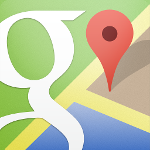 Google’s new mapping app for iPhone was always going to be a hit. People trust Google to get them where they want to go and it’s a great product. The fact the app stormed to the top of the App Store charts less than a day after its release provided a pretty clear clue as to its popularity.
Google’s new mapping app for iPhone was always going to be a hit. People trust Google to get them where they want to go and it’s a great product. The fact the app stormed to the top of the App Store charts less than a day after its release provided a pretty clear clue as to its popularity.And now Google has revealed just how big a success Google Maps is on iOS, announcing via a Google+ post that the app was downloaded more than 10 million times in less than 48 hours. A staggering number. Google doesn’t usually reveal download figures for its apps, but clearly this is something of a special case. As good as that news is for Google, it’s another slice of bad news for Apple which was probably hoping people’s dislike of its mapping tool had been exaggerated by the media.
In the Google+ post, Google's senior vice president of geo and commerce, Jeff Huber, said: "We're excited for the positive reception of Google Maps for iPhone around the world. Congratulations to the Maps Team on the recognition for the passion and hard work they poured into it, for this release and over the last 7+ years".
He also invited users to spread the word, saying: "If you already have it -- thank you, and please tell a friend. Any feedback you have is welcomed, here in G+ or in the app (just shake it)".
-

Raspberry Pi launches its own app store
Publié: décembre 17, 2012, 4:16pm CET par Wayne Williams
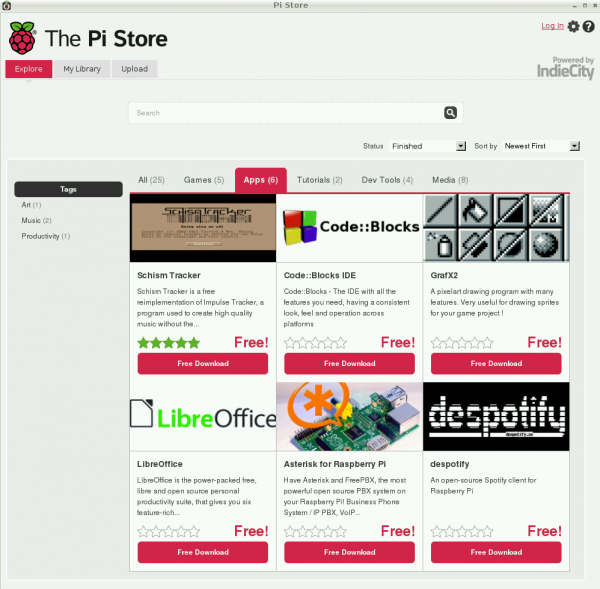 The maker of the popular credit card-sized ARM GNU/Linux computer has launched an online store to enable developers to share their games, applications, and tutorials with other Raspberry Pi users. The device was originally conceived as a way of encouraging youngsters to get into programming, and the store will provide a place for them, and older developers, to share their creations and maybe make a little money at the same time.
The maker of the popular credit card-sized ARM GNU/Linux computer has launched an online store to enable developers to share their games, applications, and tutorials with other Raspberry Pi users. The device was originally conceived as a way of encouraging youngsters to get into programming, and the store will provide a place for them, and older developers, to share their creations and maybe make a little money at the same time.At launch the store has 23 free titles, and a paid game (Storm in a Teacup which is priced at £1.99/$3.22). The free content includes utilities such as LibreOffice and Despotify (an open source Spotify client) and classic games including Freeciv and OpenTTD. There’s also an exclusive 3D multiplayer space combat game called Iridium Rising. Winners of the Raspberry Pi Summer Programming Contest are being encouraged to upload their entries to the store, too.
According to the Raspberry Pi Foundation, the store "runs as an X application under Raspbian, and allows users to download content, and to upload their own content for moderation and release". Content can be given away or charged for, and the store offers a tip jar feature, so even free applications could earn some money for more popular developers.
The key to the store’s success will be down to how well the community gets behind it and in addition to downloading and submitting projects, users will be able to rate and review entries. "The Pi Store has a recommendation engine which is tailored to you and your preferences, so the more you review, the better the recommendations we’ll be able to offer you (and other users) will be. If you rate and review constructively, it means the really great content that gets submitted will percolate up to the top, where everyone can see it," a blog post on the Raspberry Pi site explains.
Although the store was available to access earlier it’s currently down (presumably due to too much traffic from excited Raspberry Pi-ers). Hopefully it will resurface later today.
-

Did I REALLY say that? Twitter will soon let you download every embarrassing tweet you ever sent
Publié: décembre 17, 2012, 11:15am CET par Wayne Williams
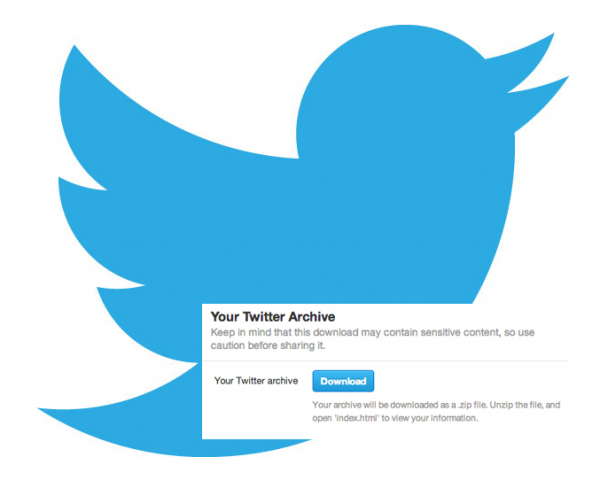 The micro-blogging site appears to be making good on its promise to allow users to download all of their tweets -- from day one -- in a single archive. Although there’s been no official announcement yet, there have been numerous sightings of the feature which is reportedly being rolled out to a very small percentage of users.
The micro-blogging site appears to be making good on its promise to allow users to download all of their tweets -- from day one -- in a single archive. Although there’s been no official announcement yet, there have been numerous sightings of the feature which is reportedly being rolled out to a very small percentage of users.To check if you have the option, go to Settings and look for a ‘Your Twitter archive’ section at the bottom of the page. If it’s there, clicking the ‘Request your archive’ button will set the wheels in motion, and you’ll be emailed a link when your zip is ready to download. Extract the HTML file to view your tweets in calendar format, with the years on the right and the tweets on the left.
Speaking at the Gerald R. Ford School of Public Policy last month, Twitter’s CEO Dick Costolo confirmed plans to give users access to their entire catalogue of past tweets, saying: "By the end of the year you'll be able to download the archive history of your entire tweets; you know, your entire tweet archive. Yes. It's a commonly requested feature. Now, I caveat this with: the engineers who are actually doing the work don't necessarily agree that they'll be done by the end of the year, but we'll just keep having that argument and we'll see where we end up year end."
So why would you want to be able to download your entire archive? Well, if you’re a heavy Twitter user it can be useful to go back in time and view everything that mattered to you since you started tweeting. The archive will help you see how your usage has changed over time (I was a very heavy Twitter user in the first year or so but then backed off when I realized just how much time I was spending tweeting about anything and everything).
It’ll also provide an interesting way of seeing how you’ve developed as a person (prepare to cringe at those early tweets) and let you quickly find past comments, should you need to reference them for any reason -- to win an argument for example. You can use it to find out what you said at the time of monumental world events too – like the deaths of Michael Jackson, Whitney Houston, and Osama Bin Laden.
Personally I’m pretty excited about it, even though I don’t use the site anywhere near as much now as I once did.
Will you be downloading your tweets when the option becomes available? And have any of you actually seen the feature yet? Let me know in the comments below.
-

Google Maps for iPhone -- now that’s how you do it, Apple [review]
Publié: décembre 14, 2012, 2:07pm CET par Wayne Williams
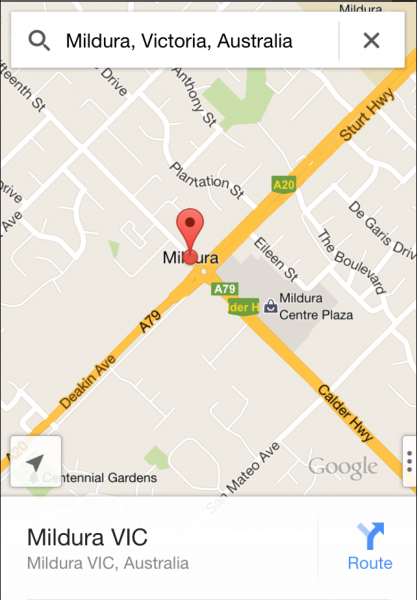 Soon after Apple replaced Google’s aging but accurate mapping solution with its own brand new, but woefully inaccurate alternative, I -- like many disgruntled iOS 6 upgraders -- switched to using the web-version of Google Maps (I briefly toyed with Nokia Here, but it’s not yet as good). The workaround was fine, but I only ever viewed it as a temporary stopgap while awaiting the triumphant return of Google Maps to the App Store, something that finally happened a couple of days ago.
Soon after Apple replaced Google’s aging but accurate mapping solution with its own brand new, but woefully inaccurate alternative, I -- like many disgruntled iOS 6 upgraders -- switched to using the web-version of Google Maps (I briefly toyed with Nokia Here, but it’s not yet as good). The workaround was fine, but I only ever viewed it as a temporary stopgap while awaiting the triumphant return of Google Maps to the App Store, something that finally happened a couple of days ago.Google Maps shot to the top of the free charts with indecent haste, further embarrassing Apple in the process, as users scrambled to install it. I installed it too, naturally, but held off on reviewing it immediately, as I wanted to make sure my happiness at its arrival wasn’t going to cloud my judgment. And the good news is, having now had plenty of time to play around with it, it’s great. Not perfect, but pretty damn close.
Google obviously does maps well, so you know it’s going to be accurate. Upon firing it up, the app got the name of my street right (something Apple Maps failed to do), and provided spot-on directions to the correct Blackpool and all of the other places I tried it with.
The app has a clean interface with the map taking up the majority of the screen. There’s a search bar at the top, with icons for directions and your profile. If you sign in to your Google account you can save your favorite places and access past searches and directions from any device. Tapping the icon at the bottom left will take you to your current location on the map, and a tab on the right gives you access to the different views -- Traffic, Public Transport, Satellite and Google Earth (if you have it). You can drag up and down on the map to change the viewing angle and circle 3D buildings, and tapping the compass will center the view to North.
Type in the name of a place and Google Maps will jump straight to it and display a white bar showing the number of available reviews, if any, and the time it will take to get there from your current location. Tap the bar, or flick it upwards, to access Street View, see any photos, read reviews, get additional information (such as opening times) and relevant website details. You can also see inside some places, and view menus of certain restaurants. Places can be saved or shared from this screen too.
Clicking the car icon will take you to the directions page. From here you can change your travelling method -- Driving, Public Transport and Walking -- and access route options. Google Maps will provide you with a choice of routes and tapping one will select it.
You can check out the route before heading off by tapping the Preview button. This will provide turn-by-turn directions at the top of the screen. These are concise but don’t always fit in the available space, so at one point I was told “At the roundabout, take the first exit onto the…” and had to continue on to the next point to find out where I was going. That happened quite a few times, but the following step always gives you the missing information so it’s never an issue. You can switch to a different map view at any time.
When you’re ready to head off, just select the route and go. You can view the list of directions and toggle the all-important voice guidance on or off.
To really get an idea of how much better Google Maps is to Apple Maps, I decided to take a virtual trip to Mildura in Australia, the place that hit the news a few days ago when the Victoria police warned motorists to avoid following Apple’s directions after some were guided into a "life threatening situation". Apple Maps now gets users to the right place, but Google Maps shows a staggering amount of detail, including outlines for all of the buildings and labels for places like hotels, banks, and hospitals.
Apple removing Google Maps from iOS 6 turns out to have been a great move for users. The new app is a vast improvement over the old one and will likely only get even better over time, and fairly quickly too. Yes, other third-party apps -- like Runkeeper, for instance -- are for the moment stuck with Apple Maps as the default mapping option, but the new Google Maps SDK for iOS should soon see that fixed, and we need never concern ourselves with Apple Maps again.
-

Total Defense takes the fight against malware to the cloud
Publié: décembre 14, 2012, 8:47am CET par Wayne Williams
According to Total Defense, a provider of internet security services and a former division of CA Technologies, the web is the primary vector for malware, with 85 percent of all threats originating there. More than 6,000 websites are infected every day, the company says, and the statistics don’t end there. It’s said that at least 75 percent of the world’s email is spam, and Total Defense estimates over 50 percent of malicious messages take the form of blended attacks designed to lure recipients into visiting infected web pages.
To prevent firms falling foul of these kind of threats the company has announced what it’s calling the "industry’s first true cloud security platform", offering enterprises and small-to-medium businesses multi-layered cloud-based protection.
Total Defense for Business integrates endpoint, web and email security, and is designed to protect Windows, Mac and Linux devices from malware, block threats from removable media (such as USB drives), and secure applications being used by end users. Cloud-based URL filtering, with real-time content analysis, further protects against malware, and spam, phishing emails, and blended threats are similarly dealt with at cloud level. Although Sophos and other security providers deliver similar solutions through bundling, Total Defense says its product is the first pure cloud offering.
Because it’s cloud-based, there’s no need to update it, and threats are prevented from ever reaching their destination. Total Defense says the platform can be deployed in hours, and is managed through a single cloud-based console.
The product can also protect users outside of the network, by applying and enforcing company policies irrespective of location and operating system. Preventing certain types of files from being sent or downloaded, for example.
Talking about the new launch, Paul Lipman, CEO of Total Defense said: "With Total Defense for Business we are changing the security game to address the proliferation of new threats, more mobile endpoints, and explosion of web and cloud based applications and data. There is nothing on the market like it today, and we are proud of the benefits it will bring our customers."
A free 15-day trial of Total Defense for Business is available to allow companies to try it before committing themselves. Firms interested in signing up to the service can request a quote through the website.
Photo credit: olly/Shutterstock
-

Pope Benedict XVI sends his first tweets, three in an hour
Publié: décembre 12, 2012, 12:39pm CET par Wayne Williams
It’s hard to imagine a more keenly anticipated tweet than the first one scheduled to be sent today -- 12/12/12 -- by his holiness Pope Benedict XVI. Shortly after news broke that the Pope had signed up to the micro-blogging site, Twitter users flocked to follow his account, @pontifex and speculation began to grow about what he might say.
Since the Vatican asked for questions of faith to be sent to #askpontifex it was generally assumed his first tweet might address a particular weighty matter of faith. But showing that the 85-year totally gets Twitter, the first message he sent was anything but momentous: "Dear friends, I am pleased to get in touch with you through Twitter. Thank you for your generous response. I bless all of you from my heart."
The pope sent the greeting himself, tapping it out on a touchscreen at the end of his weekly general audience in the Vatican. The tweet was made available in eight different languages and sent to different accounts. The German version, for example, is available to view at @Pontifex_de.
45 minutes later and, like so many of us trying Twitter for the first time, the Pope was hooked, sending a second far more weighty tweet: "How can we celebrate the Year of Faith better in our daily lives?" he asked.
A good question. Three minutes later, the answer: "By speaking with Jesus in prayer, listening to what he tells you in the Gospel and looking for him in those in need."
The Pope intends to send out new tweets every Wednesday, unless of course, he really gets into it, in which case we can expect a far more regular stream of them.
Photo Credit: Catholic Church (England and Wales)
-

Yahoo overhauls its mail service, adds new mobile apps
Publié: décembre 11, 2012, 4:08pm CET par Wayne Williams
When Marissa Mayer took over the reins at Yahoo, it was largely expected that Yahoo Mail would be one of the first services to be revamped. Despite still being hugely popular, it lags behind Gmail in terms of features and has, for a long time, felt rather neglected.
Well, the good news if you’re a Yahoo Mail diehard, is the service has undergone some major changes. Improvements include a redesign made with speed in mind. An easier to navigate, more intuitive and less distracting inbox will apparently allow users to get through their emails much quicker. Recognising the importance of mobile devices, finally, Yahoo is also rolling out new Yahoo Mail apps for Windows 8, iPhone/iPod touch and Android.
Announcing the changes today, Marissa Mayer said: "Email is the ultimate daily habit. It’s often the first thing we check in the morning and the last thing before going to bed. Why? Because it’s one of the simplest and most basic forms of communication. And since it’s such an important part of our daily lives, we’re making a few improvements to Yahoo Mail. You’ve told us loud and clear that you want fewer distractions when it comes to email. You want to quickly login, communicate, and get on with your day. And we’ve listened. Starting today, the new Yahoo Mail is fast, easy and available anywhere you go".
The new service is being rolled out now, and existing users should expect to receive the upgrade at some point over the next couple of days.
-

Disable the new Windows 8 interface for good with Ex7ForW8
Publié: décembre 11, 2012, 1:12pm CET par Wayne Williams
Microsoft might want all users of Windows 8 to use its new tiled interface, but if you really don't like it, or it's the one thing that's preventing you from switching to the new OS full time, there's a clever hack which will disable it for good -- or until you want to switch back, at least.
Ex7ForW8, or "Explorer 7 for Windows 8", is a wrapper created by a developer named Tihiy which basically allows Windows 7's explorer.exe to run on the new OS. Once installed and activated it will take users straight to the Windows 7 desktop upon boot up, and when I say "straight to" I mean it. The new UI doesn't load at all. The wrapper doesn't modify any system files or system protected registry entries, and you can switch back to the Windows 8 UI at any time.
Ex7ForW8 lets you enjoy all the benefits of the new OS -- faster boot up times, better security, SkyDrive integration and so on -- and new Explorer features, such as the ribbon interface, and enhanced file copying/moving are all still available. Only the Start screen formerly known as Metro is missing. And because the tool loads the Windows 7 shell, you'll get the Start button and Start menu back.
Of course disabling the Start screen also disables any Windows apps you might have installed, but you'd expect that, right?
I've actually been using this tool since the latest version was released in the middle of November, and so far I've experienced no problems at all. I miss the multi-monitor taskbars, but that's a small price to pay. I really like the new Windows hybrid the app creates, and the fact I can quickly switch between the Windows 7 and Windows 8 shells via the Start menu means I can still use the Windows 8 interface and access my apps whenever I need to.
The tool is very easy to install, you just run the Ex7ForW8_setup.exe file and follow the instructions. You will need to have a Windows 7 installation disc or files on hand though.
Removing the app afterwards (should you choose to) is just a matter of uninstalling it via Programs and Features.
-

Twitter takes on Instagram, introduces photo filters
Publié: décembre 11, 2012, 9:22am CET par Wayne Williams
Just days after Instagram said it would no longer allow the micro-blogging site to display its photos, Twitter has responded by giving users the ability to apply colored filters to pictures they upload.
There are eight Aviary-powered filters to choose from -- Vignette, Black & White, Warm, Cool, Vintage, Cinematic, Happy, and Gritty. A grid view shows how each of the filters will affect your image, and you can tap any of the choices and then scroll left or right to view the alternatives.
Users are able to pinch to zoom in and change the focus, and crop an image. A magic wand function automatically enhances shots.
Making the announcement, Twitter’s Senior Designer Coleen Baik said: "Every day, millions of people come to Twitter to connect with the things they care about and find out what’s happening around the world. As one of the most compelling forms of self-expression, photos have long been an important part of these experiences. Starting today, you’ll be able to edit and refine your photos, right from Twitter."
The photo editing features are available in the new iPhone and Android apps which are rolling out now.
-

Apple Maps guides Australian motorists into ‘life threatening’ situation
Publié: décembre 10, 2012, 5:05pm CET par Wayne Williams
Apple’s replacement for Google Maps isn’t the most reliable of mapping apps, especially outside of the United States. The first time I used it, requesting directions to Blackpool on the north-west coast of England, it sent me to the south coast, some 248 miles the wrong way. Of course, I didn’t actually make that journey, but had I been visiting from outside of the United Kingdom, and knew no better, I would have been in for a very nasty surprise if I’d followed the app’s directions. But at least I wouldn’t have been misdirected into a potentially life threatening situation, unlike some motorists in Australia.
Victoria police have been forced to issue a warning after Apple Maps routed a number of motorists off the beaten track and into the middle of a national park with no water supply and where temperatures can reach up to 46 degrees.
According to the warning: "Local Police have been called to assist distressed motorists who have become stranded within the Murray-Sunset National Park after following directions on their Apple iPhones. Tests on the mapping system by police confirm the mapping systems lists Mildura in the middle of the Murray Sunset National Park, approximately 70km away from the actual location of Mildura".
Some of the motorists were reportedly stranded for up to a day with no food or water and have "walked long distances through dangerous terrain to get phone reception".
The police say they have contacted Apple on the matter, but that anyone travelling to Mildura or other locations within Victoria "should rely on other forms of mapping until this matter is rectified".
To be fair, anyone travelling anywhere, should just rely on other forms of mapping -- it's safest all round.
-

Samsung teases us with 'something new' coming next month
Publié: décembre 10, 2012, 1:47pm CET par Wayne Williams
The South Korean tech giant has released a short YouTube teaser promising a new product which will be revealed on January 8-11 2013, presumably at the International CES in Las Vegas.
"The world awaits" the video says at the beginning before quickly flashing up words like "Innovation", "Ideas", "Design", "Technology", "Dreams", "Wonder", and "Future". It's obviously just an attempt to drum up interest in the forthcoming product and get the Samsung faithful speculating, as there are no other clues as to what the product might be. There are already plenty of guesses in the comments under the video, of course.
Some of the suggestions include the first smartphone or tablet running the Tizen OS (which would be my best guess), the Galaxy S4, a Windows Phone 8 device, or a new, updated, or larger Samsung tablet. It could be any of those, or something entirely different. Since there's little to go on, it's hard to say.
What's your best guess? Leave it in the comments below.
-

Gmail for iOS gets a major update
Publié: décembre 4, 2012, 8:59pm CET par Wayne Williams
Although there was an odd blip where Google’s new Gmail app appeared in the App Store, and then vanished mysteriously (a "rollout issue" according to Google), it’s back again and is available to actually download this time. And the good news is: it’s worth grabbing.
As a Gmail user, and an owner of an iPad and a few iPod touches, I’ve never really rated the old, official app, preferring to just to stick with the mobile web version. After ten minutes use I can say that while the update is not perfect, it is a huge step in the right direction and a massive improvement over its predecessor.
Version 2.0 is a major revision, and as well as a brand new, much cleaner look, the app introduces some welcome new features, including (finally) support for multiple accounts. Adding additional accounts (up to five) is just a case of opening the sidebar, tapping the down arrow and then tapping Add Account. Each mail account has its own icon and notification flag for unread messages.
There’s an infinite scrolling inbox, and searching through your messages is much quicker as the app now offers autocomplete predictions as you type. You can respond to Google Calendar invites directly from within the app too, and also attach multiple photos to messages, or draw scribbles.
The new app is much faster than the old one, which is good news as the previous version crawled at times -- especially when opening. Transitions are smooth and fluid. It finally feels like an iOS app, rather than a slow web one.
Google also introduced an update to its Android Gmail app yesterday, bringing several additional features to devices running Android 4.0 (Ice Cream Sandwich) and up, including larger photo previews, an auto fit-to-screen message view and message zooming, as well as the ability to archive or delete messages by swiping.
If you've tried either of the new apps, let me know what you think of them in the comments.
-

Ashton Kutcher is Steve Jobs
Publié: décembre 4, 2012, 2:34pm CET par Wayne Williams
The Apple co-founder passed away a little over a year ago, but such is the continuing interest in Steve Jobs’ life, there’s not one, but two Hollywood biopics in development. Aaron Sorkin’s adaptation of Walter Isaacson’s biography (which will apparently be set behind the scenes of three of Jobs’ biggest product launches -- the Mac, NeXT and the iPod), is due to start shooting next year, while jOBS, Joshua Michael Stern's more typically-structured take on events, is already in post-production and has been booked to close next year's Sundance Film Festival.
jOBS has attracted a lot of interest, partly for its choice of leading man. Ashton Kutcher’s movie career hasn’t exactly set Hollywood alight, and it’s fair to say the news that he was to play Jobs didn’t exactly go down well with the Apple faithful. Still, the actor seems to be taking the role seriously, and certainly looks the part in the promo photo released today.
The Sundance festival blurb describes the movie as: "The true story of one of the greatest entrepreneurs in American history, jOBS chronicles the defining 30 years of Steve Jobs’ life. jOBS is a candid, inspiring and personal portrait of the one who saw things differently." According to Trevor Groth, director of programming for Sundance, the film was chosen to close the event because "there's something inspirational about it. To see what he achieved by just like staying true to his vision is something that I think a lot of people can relate to and get hope from."
If you’re still not convinced about Kutcher in the role, Festival director John Cooper believes the Two and a Half Men actor’s portrayal might just change your mind. Speaking to the Hollywood Reporter, he said: "Ashton Kutcher's performance I thought was quite remarkable. It's a very formidable performance, and it seemed like he really tried to grasp all the nuances of who Steve Jobs was."
Of course jOBS isn’t the first movie to chronicle the Apple co-founder’s incredible life. 1999’s Pirates of Silicon Valley, which told the story of the early years of Apple and Microsoft, starred Noah Wyle as Steve Jobs and is definitely worth seeking out if you haven’t already seen it.
What’s your take on jOBS? Is it a film you’re excited to see? Perhaps you’re more stoked about Aaron Sorkin’s take on the great entrepreneur’s career, or don’t fancy either of them. As always leave your comments below.
-

Hail Mary! The Pope tweets
Publié: décembre 3, 2012, 5:40pm CET par Wayne Williams
Pope Benedict XVI sent his first tweet last year via the Vatican's official Twitter account but now he's got his own personal account and plans to start telling followers what he had for dinner, posting communion wafer recipes, and retweeting comments from the likes of Ricky Gervais and Kayne West.
Well, maybe not. His account @pontifex (meaning both pontiff and "builder of bridges") will actually be used to send spiritual messages translated into eight languages (English, French, German, Spanish, Italian, Portuguese, Polish, and Arabic), and he'll likely be agreeing with the message rather than composing it himself.
According to Greg Burke, the Vatican's senior media advisor, "The Pope is not going to be walking around with a BlackBerry or an iPad". However, Burke also stressed that the tweets would be coming from the pontiff himself. "No-one is going to be putting words into the Pope's mouth. He will tweet what he wants to tweet".
In today’s announcement the Vatican says: "The Pope's presence on Twitter is ultimately an endorsement of the efforts of these 'early adapters' to ensure that the Good News of Jesus Christ and the teaching of his Church is permeating the forum of exchange and dialogue that is being created by social media. His presence is intended to be an encouragement to all Church institutions and people of faith to be attentive to develop an appropriate profile for themselves and their convictions in the 'digital continent'".
There are 1.2 billion or so Roman Catholics in the world, so Pope Benedict XVI has a good chance of massing a pretty sizeable following in no time. A quick check shows he already has over 100,000 followers, which is far more than the 12 Jesus had.
The first tweets from @pontifex are expected to be sent on the 12 December, the Feast of Our Lady of Guadalupe, and will be answers to questions on matters of faith sent to #askpontifex.
-

Google pushes to keep the internet free and open
Publié: décembre 3, 2012, 10:27am CET par Wayne Williams
It’s no secret that a lot of the world’s governments want the internet to be regulated. Two months ago, I wrote an article on how the Saudi government, fired up by The Innocence of Muslims video that YouTube was refusing to pull, had made a submission to the World Telecommunications Policy Forum, calling for the creation of a new overseer designed to censor offensive content on the Internet.
That particular event is scheduled for May, but starting today, at a closed-door meeting of The International Telecommunication Union (ITU) in Dubai, world governments will be discussing, among other things, internet regulation and will be looking to revise a decades old treaty that could allow more oppressive countries to justify the censorship of free speech, and even cut off internet access if they so choose. You can see some leaked proposals on the WICITLeaks website.
Whatever your views on Google, there’s no question that the web giant has always been a proponent of a free and open internet (it’s necessary for its success and survival after all), and in a new blog post Vint Cerf, Google's chief internet evangelist, and one of the "fathers of the internet", discusses the potential ramifications of the ITU meeting.
Google has set up a petition so you can pledge your support to a free internet. You just need to fill in your name, email address and location (a link will tell you what Google intends to do with your information). You can also help to increase awareness via Google+, Facebook, and Twitter.
You can see the names and locations of people who have signed the petition on an interactive world map, with the latest additions flashing up in real time. As I write this, the counter currently shows over a million people have added their voices so far, but this figure is increasing at a rate of around 600 signatures a minute and will likely speed up once more people get to know about it.
Will you be adding your name to Google’s petition?
-

The curious case of Windows 8 sales numbers
Publié: novembre 30, 2012, 4:38pm CET par Wayne Williams
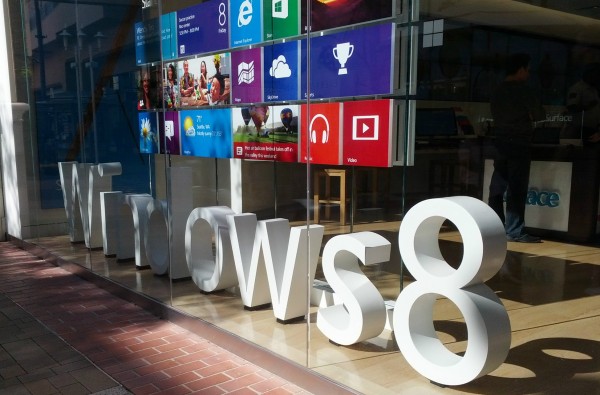
Every time Microsoft launches a new operating system there’s one phrase you’re guaranteed to hear: "This version of Windows is outselling its predecessor". Microsoft claimed Windows Vista got off to a fast start, shifting more than 20 million copies in two months -- some three million more than XP sold in the same time frame. Windows 7 of course comfortably outsold Vista, and recently Tami Reller, finance and marketing head of the Windows business, announced that Microsoft sold 40 million licenses for Windows 8 to date, adding, "Windows 8 upgrade momentum is outpacing that of Windows 7". Of course, of course. The message here is clear: every version of Windows is a success. But how successful is Windows 8, really?
We don’t know. That’s the bottom line. When Apple says it’s sold X billion apps we know that’s true because sales go through the App Store and are counted. When Microsoft says it’s sold 4 million copies of Windows 8 in the first few days, or 40 million licenses to date, we have no idea what that means in terms of actual sales. Consumers activate Windows when installing it, so Microsoft will know how many activations it's had, and yet that figure, the one we know to be trustworthy, has yet to be revealed. There’s a lot of talk about how poorly Windows 8 is doing. An activations figure, if decent, would silence the critics. But there’s no sign of it.
Microsoft tells us it’s sold 40 million licenses to date, but as Rob Helm, managing vice president for research at Directions On Microsoft says: "Microsoft hasn't explained how it's counting licenses. Without that information, it's a little hard to tell what that 40 million figure really means."
What the number definitely doesn’t mean is 40 million sales to users. It’s likely a mix of pre-orders, discounted upgrades, and bulk licenses sold to PC manufacturers like Lenovo, Dell or HP. Hardware partners buy the licenses and then sell them to consumers and businesses. Or don’t sell them on, if no one's buying. And NPD says they aren’t. The PC sales figures are so bad it’s not unreasonable to suspect at least one-third of those 40 million licenses have yet to reach end users.
So how many people use Windows 8? We don’t know. How many people have activated it? We don’t know. And the fact we don’t know doesn’t look good for the new OS. Tech research firm StatCounter estimates about 1 percent of the world's PCs (1.5 billion) run Windows 8. If that’s the case, it means around 15 million users have the new OS.
"Windows 8 upgrade momentum is outpacing that of Windows 7" Microsoft says. What does that mean? Users are upgrading? From what? Windows 7? From XP? Users were desperate to upgrade to Windows 7. XP was years old, Vista was poorly received. Consumers aren’t anywhere near as desperate to upgrade to Windows 8. They might want to, but they don’t need to, so that statement seems a little suspect. The upgrade offer is incredibly cheap right now though, so it’s perhaps that which drives the numbers. Whatever those numbers might be.
Microsoft hasn’t revealed any solid sales figures for apps yet either. It crows a "number" of apps "have crossed the $25,000 revenue mark" (when Microsoft's cut drops from 30 percent to 20 percent) but doesn’t say which ones, or how much they are selling for. An app retailing for $5 dollars would only have to sell 5,000 copies. Hardly big sales numbers.
Anyway, does it really matter if Windows 8 isn’t outselling Windows 7? No. We’re in a global recession, a lot of people are more than happy with their older OS, touch-screen devices are still rolling out, so even if Windows 8 isn’t doing well now that's more than understandable, and the OS still has a good chance of picking up sales in the new year. Microsoft doesn’t have to front it out. Even if the number of current activations is low, it can’t be as bad as analysts are beginning to speculate.
Can it?
Photo Credit: Joe Wilcox
-

The all-new iTunes 11 arrives -- finally
Publié: novembre 29, 2012, 9:04pm CET par Wayne Williams
Apple has released the long-awaited iTunes 11 and boy does it look different. The brand new, easier to navigate interface provides a simplified view of your media. The default view shows a grid of albums and you can expand each one to see the songs it contains. There’s a pop-up menu on the left to browse your libraries (Music, Films, TV Programs and Apps) and a button on the right to open the iTunes Store. The Playlists button is located in the bar at the top of the screen. The familiar sidebar on the left is no more.
When you connect an iPhone, iPod or iPad to your computer, a button for it will appear and you can add content to the device by dragging and dropping.
A new feature called Up Next lets you create a queue of songs without having to build a playlist. You can add and remove tracks on the fly.
There’s a new much smaller MiniPlayer that lets you search for songs and manage the Up Next queue. The redesigned iTunes Store home page puts new content at the top of the screen and a Preview History button lets you quickly find any items you looked at previously.
iTunes 11 also offers much deeper integration with iCloud. When you buy something on any device you’ll be able to instantly access it on your PC or Mac. You can even download it for offline use.
Playing with it briefly, I think iTunes 11 looks pretty damn good. What do you think?
-

Piracy site Newzbin2 closes for good
Publié: novembre 29, 2012, 8:23pm CET par Wayne Williams
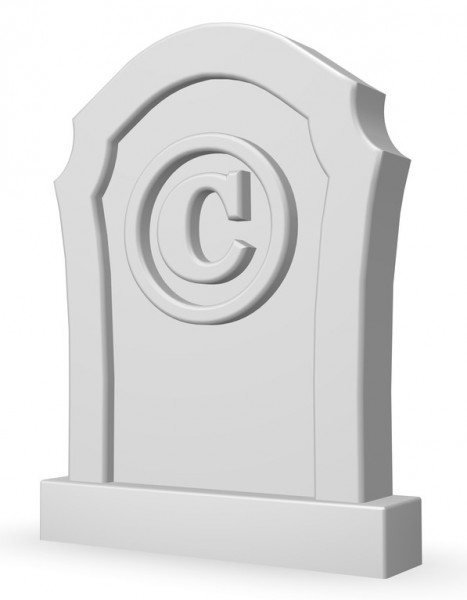 Newzbin2, a site offering links to pirated content, hit the headlines back in November 2011 when a successful court case brought by the Motion Picture Association led to it being blocked by a number of major ISPs in the UK, including BT, Virgin Media, Sky, and TalkTalk.
Newzbin2, a site offering links to pirated content, hit the headlines back in November 2011 when a successful court case brought by the Motion Picture Association led to it being blocked by a number of major ISPs in the UK, including BT, Virgin Media, Sky, and TalkTalk.The website responded in bullish fashion by rolling out an encrypted software client to circumvent the ban and switching to a Spanish domain to avoid the threat of domain seizure, but the adverse publicity meant that payment providers were unwilling to work with the site, leaving the owners unable to pay the hosting costs. Despite this, Newzbin2 struggled on, offering an increasingly unreliable service, until today when it finally closed for good.
As I live in the UK, and my ISP blocks Newzbin2, I can’t view the closure statement on the front page directly, but it reads as follows:
It is with regret that we announce the closure of Newzbin2.
A combination of several factors has made this the only option. For a long time we have struggled with poor indexing of Usenet, poor numbers of reports caused by the majority of our editors dropping out & no-one replacing them. Our servers have been unstable and crashing on a regular basis meaning the NZBs & NFOs are unavailable for long periods and we don't have the money to replace them.
Newzbin2 was always hoped to be a viable underground commercial venture. The figures just don't stack up. Newzbin1 was said to have had 700,000 registered users. In fact that was the total number of people who ever signed up in the history of Newzbin from 2000 onwards & only a fraction were active, loads of people dropped out & went to other sites. We reckon they had about 100,000 users and of those only a few 10's of thousands paid premium topups. That still made good money for the Newzbin1 guys. We never quite got the trust and lots of people said "Newzbin2 is an MPA trap", that stung us bad and we never got the userbase back. We don't have much more than about 40000 active users and the number of premium users is in the small thousands. It costs much more to run than we bring in, It just doesn't stack up.
To make things worse all our payment providers dropped out or started running scared. The MPA sued PayPal and are going at our innocent payment provider Kthxbai Ltd in the UK. Our other payment provider has understandably lost their nerve. Result? We have no more payment providers to offer & no realistic means of taking money (no, Bitcoin isn't credible as it's just too hard for 90% of people).
The tragedy is this: unlike Newzbin1 we are 100% DMCA compliant. We have acted on every DMCA notice we received without stalling or playing games: if there was a DMCA complaint the report was gone. Period. That was a condition of our advertising & payment partners so we complied but we never got a single complaint from the MPA. Not one.
Will we be back? not as a search service but we might run a blog from this site at some point.
Christine Payne chairwoman of the Creative Coalition Campaign, which represents groups such as the MPA, welcomed the closure of the site saying: "This is great news. Pirate websites should not be allowed to trade as this undermines the ability of legitimate businesses to recoup their considerable investment and threatens jobs in the creative sector."
Photo Credit: jörg röse-oberreich/Shutterstock
-

Minecraft is coming to the Raspberry Pi
Publié: novembre 26, 2012, 4:01pm CET par Wayne Williams
A port of the incredibly popular indie sandbox survival game Minecraft will soon be available for the Raspberry Pi, and if that news isn’t enough to get you excited, the price might -- it will be entirely free.
Minecraft: Pi Edition (a port of Minecraft: Pocket Edition) was officially unveiled at Minecon in Paris, and offers a revised feature set and support for several programming languages, so users can code directly into the game. According to Minecraft publisher Mojang, users will be able to "start by building structures in the traditional Minecraft way, but once you’ve got to grips with the in-game features, there’s opportunity to break open the code and use programming language to manipulate things in the game world. You’ll be learning new skills through Minecraft".
The uncased, credit-card sized Raspberry Pi computer connects to your TV and a USB keyboard and mouse, and costs just $35, giving Minecraft fans a very affordable way of experiencing their favorite game on a big screen.
"The possibilities are massive," Mojang’s Owen Hill explains. "You could organize the cheapest LAN party of all time, or use the Pi to learn the fundamentals of programming on a miniscule budget. It’s like hacking your way into Minecraft and modifying the game world with code, a bit like being [game developers] Notch, Jeb, or Nathan, but arguably more fun and less stressful".
Minecraft: Pi Edition will be available to download from the Raspberry Pi site soon.
Photo credit: Mojang
-

One in six UK users download or stream media illegally
Publié: novembre 23, 2012, 5:02pm CET par Wayne Williams
 A new report from Ofcom reveals that one in six Internet users in the United Kingdom access films, TV shows, music, or eBooks through illegal means. Published this week, the first results from an ongoing study of Internet users aged 12 and above also reveals that 47 percent are unsure whether the online content they download, stream or share is legal or not.
A new report from Ofcom reveals that one in six Internet users in the United Kingdom access films, TV shows, music, or eBooks through illegal means. Published this week, the first results from an ongoing study of Internet users aged 12 and above also reveals that 47 percent are unsure whether the online content they download, stream or share is legal or not.During the three-month period from May to July 2012, Ofcom found that the levels of infringement varied considerably depending on content type. For example, while 8 percent of users accessed music illegally and 6 percent consumed films that way, just 2 percent downloaded games and software. That said, of all the computer software obtained online, 47 percent of it was acquired illegally.
Unsurprisingly, the greatest copyright infringers were likely to be male and aged between 16-34, with books clear and away the least enticing form of pirated media.
The reasons given for downloading or streaming content illegally included because it’s free (54 percent), it’s more convenient (48 percent), it’s quick (44 percent) and it lets you try before you buy (26 percent). This last reason seems to carry at least some weight as users who consumed a mixture of legal and illegal content claimed to have spent more money on media than both those who obtained their content entirely legally or illegally.
When asked what would make the infringers stop, responders said availability of cheaper legal services (39 percent), if everything they wanted was available legally (32 percent) and if it was clearer what was legal and what wasn’t (26 percent).
The full report is available from here.
Photo Credit: CREATISTA/Shutterstock
-

Windows 8: Weak on tablets, terrible for PCs
Publié: novembre 21, 2012, 7:15pm CET par Wayne Williams
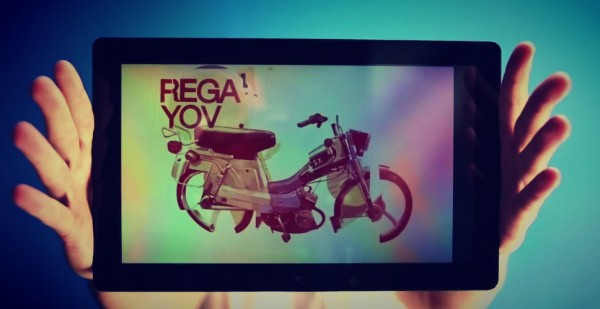
I write this on my new least-favorite operating system: Windows 8. I knew when installing that I would have to use it as my sole OS. Spending equal amounts of time in Windows 7 and 8 (occasionally dipping into Ubuntu) just wouldn’t have worked. Windows 8 is a very different beast and takes time to master properly, and I knew I couldn’t do that if running its predecessor, too. This was the problem I had with the early releases of Windows 8 -- I just wasn’t committed enough.
This total immersion has worked well for me. Using Windows 8 is now a breeze. I zip around using keyboard shortcuts where possible, and I jump between the desktop and Modern UI without thinking about it. But here’s the thing: I still don’t like Windows 8.
The problem, for me: Microsoft made some major changes, left other elements untouched, and then did a spot of almost random remixing. It’s like living in the same house for years, and then coming back one day to find a builder moved all the rooms around. I want to go somewhere, but the route to my destination is altered. It doesn’t take me any longer to get there, now, but it’s just unnecessarily disorientating.
If It Ain’t Broken, Fix It Until It Is
Two often mentioned issues with Windows 8: The lack of a Start button and the hidden shutdown option. There’s still a Start menu, of sorts, in Windows 8 but you have to know it’s there. There’s no obvious clue. The builder has left a door in the wall, but papered over it. The shutdown button has been tucked away in one of the least obvious places (type "how to shutdown Windows 8" into Google and you’ll be presented with numerous tutorials on the subject, which is crazy). It’s akin to the builder putting the exit behind a load of coats under the stairs.
People used to say clicking Start to end a Windows session was ridiculous, but it was the only major button to click (and hasn’t had the word "Start" on it since XP), so that made a degree of sense. Putting the button in a Settings window, that can only be accessed by clicking a picture of a cog, which you can only get to via a hidden sidebar, which is revealed by moving your mouse to either the top or bottom right corners of the screen… now that’s ridiculous.
Usability Issues
I install and use a lot of different programs every month (probably around 30 or so). Most are easy to master, but some require a dip into the manual or some major experimentation. Windows 8 isn’t the least intuitive piece of software I’ve ever used. Not even close. But it clearly wasn’t designed with usability in mind.
Now for a confession, the heading of this article -- "weak on tablets, terrible for PCs" -- isn’t actually mine. It’s from a new study on the UseIt website that asked 12 experienced PC users to take a look at Microsoft’s OS (on PCs and Surface RT) and condensed their findings into a scathing report that’s full of damning, but entertaining declarations, such as: "Windows 8 on mobile devices and tablets is akin to Dr. Jekyll: a tortured soul hoping for redemption. On a regular PC, Windows 8 is Mr. Hyde: a monster that terrorizes poor office workers and strangles their productivity".
The report does have some valid observations though: "One of the worst aspects of Windows 8 for power users is that the product's very name has become a misnomer. 'Windows' no longer supports multiple windows on the screen. Win8 does have an option to temporarily show a second area in a small part of the screen, but none of our test users were able to make this work. Also, the main UI restricts users to a single window, so the product ought to be renamed 'Microsoft Window.'"
The report complains that Windows 8’s style makes it difficult to know what can and can’t be clicked. Buttons don’t look like buttons; links look like headings. Live content makes it impossible a lot of the time to know what various tiles are supposed to represent.
RT Scorecard
Windows RT gets off somewhat more lightly than its big brother -- "there’s nothing that a modest redesign can't fix" -- but is criticized for introducing "a bunch of complicated gestures that are easy to get wrong". The fact that the "UI is littered with swipe ambiguity" doesn’t help its cause either.
The report is an interesting read, and I actually agree with a lot of the points. Like any piece of software, once you know how to use it, Windows 8 is actually pretty easy to navigate around, but you’ve got to invest time in it. The mark of a good user interface, for me, is how obvious and intuitive it is. If you have to wave your mouse around the screen, clicking more in hope than expectation, someone, somewhere has done a bad job.
With a great interface design, you move around the screens and menus instinctively, without thinking about what you’re doing. If you have to pause and wonder how the hell to do something fundamental -- like shut down an operating system -- the UX designer has failed you very badly indeed.
-

Nokia HERE for iOS will get you where you want to go [review]
Publié: novembre 21, 2012, 8:54am CET par Wayne Williams
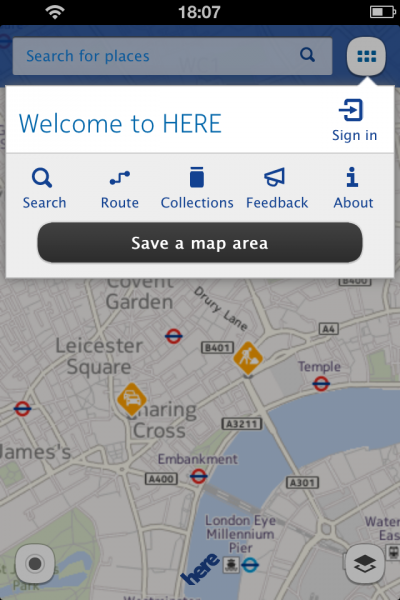 If you want to get directions on an iOS device, you have two main options. 1) use Apple’s built-in mapping app to go to somewhere other than intended, potentially risking your life and the lives of your passengers along the way, or 2) fire up the mobile version of Google Maps, which is good but not as great as the old app that vanished when Apple decided its users would be better off with sketchy, featureless maps and inaccurate directions.
If you want to get directions on an iOS device, you have two main options. 1) use Apple’s built-in mapping app to go to somewhere other than intended, potentially risking your life and the lives of your passengers along the way, or 2) fire up the mobile version of Google Maps, which is good but not as great as the old app that vanished when Apple decided its users would be better off with sketchy, featureless maps and inaccurate directions.Thankfully, while Apple’s map team is trying to push its Toyota Prius out of a field that should be a freeway, and Google is still putting the finishing touches to its shiny new Maps app, Nokia has arrived to save the day with HERE, a mapping and location service powered by NAVTEQ data (as used in the majority of in-car navigation systems).
When you launch HERE for the first time you’re greeted by a welcome message which states the following: "All the services may not be available or accurate at all times". I know it’s a simple legal disclaimer, but really that doesn’t exactly instill you with confidence from the off.
Anyway, once loaded the app accurately found me on a map and correctly identified the name of street I live on (Prince’s Drive), thereby immediately scoring more points than Apple Maps, which got the road name wrong (Princess Drive).
HERE’s maps are simple, but decent enough, and the app has some great features. Tapping the little icon at the bottom right lets you switch between Map view, Satellite view, Public Transport view and Live Traffic view, and there’s a separate Traffic option which, when turned on, highlights nearby points of concern, such as accidents, construction work, congestion and other issues, helpfully color coding them for importance and letting you choose which to display. Zooming out slightly, HERE identified a spot of congestion that I knew must be accurate as my wife was running late (she’s just arrived and confirmed this).
When I originally tested out Apple Maps I asked for the route from my home to the seaside town of Blackpool (I live in the UK) and was directed in totally the wrong direction. No such problem with HERE, which came up with the correct route, provided directions that were easy to follow, and marked the areas where I would have expected to have encountered delays.
HERE lets you switch between driving, walking and public transport but can’t provide walking directions for longer than 30 miles (so is no good for anyone planning a jaunt from Land's End to John o' Groats) and didn’t seem able to find any public transport to take me from one train station to another, even though it was a direct line. Still some work to be done there, Nokia.
HERE lets you save map areas for offline viewing, albeit in limited resolution, and store places in collections (you’ll need to sign in to do this). It can provide information on nearby locations of interest in major cities, such as places to eat, shop and sights to see, and there are photos of a few cities available too, but nothing to get excited about.
Nokia’s app isn’t perfect, and it’s certainly no Google Maps, but for the moment it’s the best mapping option on iOS 6 by some way, and will likely only get better.
The app incidentally is also available on Android, but only through Amazon's app store. That said, there's currently an unofficial version of it available on Google Play if you want to grab it from there.
-

The world’s first digital bottle top
Publié: novembre 19, 2012, 4:57pm CET par Wayne Williams
There have been some great technical innovations in recent years. The iPod, the iPhone, Wi-Fi, TiVo, Kinect… the list goes on and on. But surely they all pale into insignificance compared to the mighty, life-changing invention that is the digital bottle top.
Yes, it’s a real thing. Created by British cider brand Strongbow and marketing agency Work Club, the StartCap is a bottle top with built-in RFID. When you pop the top, exposing the tag, a signal is sent to a reader somewhere in the room (at a bar or club) causing some kind of action to occur.
Exactly what response is generated will be entirely down to the venue, but it could include changing a record, adjusting the lighting, setting off fireworks, checking you in, or starting half-price drinks happy hour. It’s only a prototype at the moment, but there are plans to launch it at events across Europe soon.
So what do you think? A great idea or -- like One Direction -- another of the seven signs of the apocalypse?
-

App -- the first movie that actually encourages you to get your phone out in the cinema
Publié: novembre 16, 2012, 5:21pm CET par Wayne Williams
There’s nothing more annoying than someone playing on their mobile phone during a movie. Even if you’re sitting a good distance away, the glowing small screen lights up the cinema like a beacon, making it harder to focus on what’s happening on the big screen.
Forthcoming feature-length thriller App is set to turn what is usually seen as socially unacceptable behavior into a highly social act, encouraging everyone to use their iPhones and Android devices to follow a parallel storyline while the film is playing.
The plot of the movie, which is being created by Amsterdam-based 2CFilm, apparently revolves around the titular app which has "become an autonomous force" (make of that what you will). The companion smartphone app, developed by Service2Media, will use Civolution’s SyncNow digital watermarking technology to deliver the second story in perfect sync.
Edvard van ‘t Wout, founder of 2CFilm, says: "App is our first step on to the international stage with our new approach to film, creating commercially-successful films that fit with how today’s audiences consume content and which resonate with the modern world."
Alex Terpstra, CEO of Civolution, adds: "This is a first of a kind synchronized multi-screen experience for cinema and other forms of distribution. It takes full advantage of the latest state of technology and creative skills, united in a unique partnership, defining a new level of entertainment experience leveraging people’s smart mobile devices".
App is due for release in the Netherlands on Feb. 24, 2013 (no word about distribution in other countries just yet) and is intended to be the first of several such projects.
-

HP: Surface is 'slow and a little kludgey'
Publié: novembre 15, 2012, 5:06pm CET par Wayne Williams
 Our own Robert Johnson might love his Microsoft Surface tablet, but HP's head of PC, Todd Bradley, isn’t quite so keen. In an interview with IDG Enterprise, Bradley dismisses Microsoft’s foray into the PC hardware market claiming he doesn’t see the new tablet as a threat.
Our own Robert Johnson might love his Microsoft Surface tablet, but HP's head of PC, Todd Bradley, isn’t quite so keen. In an interview with IDG Enterprise, Bradley dismisses Microsoft’s foray into the PC hardware market claiming he doesn’t see the new tablet as a threat."I'd hardly call Surface competition", he says, before going on to explain his reasons. "One, very limited distribution. It tends to be slow and a little kludgey as you use it. I just don't think it's competitive. It's expensive." He also states that consumers haven't taken to the Windows RT tablet either. "Holistically, the press has made a bigger deal out of Surface than what the world has chosen to believe. If you want to go to any of the 30 Microsoft Stores in the United States to buy one, I think you should probably do that".
HP makes tablets for the enterprise, but -- no doubt still burnt by last year’s TouchPad fire sale -- has no immediate plans to roll out a Surface competitor. According to Bradley: "We're not entering the consumer tablet fray any time soon. We'll be doing something next year, but you won't see a consumer tablet from HP before Christmas. You'll see convertibles that are focused on how you use the device, keyboard, clamshell".
Returning to the subject of Microsoft, Bradley freely admits he isn't a big fan of RT and when asked if Windows 8 makes sense without touch, says: "Depends on the customer. You can clearly use it and navigate it. It's a question of pricing, how do you get a broad set of touch products with prices that are relevant. Microsoft has clearly tried to dictate to customers what they need. If you look at retail orders, what we built with touch related to Windows 8, touch is a small percentage of that. It's a price point issue, it's a go to market issue, it's an orientation issue"
Photo credit: HP
-

Turn your iPad mini into a really small laptop
Publié: novembre 15, 2012, 3:59pm CET par Wayne Williams
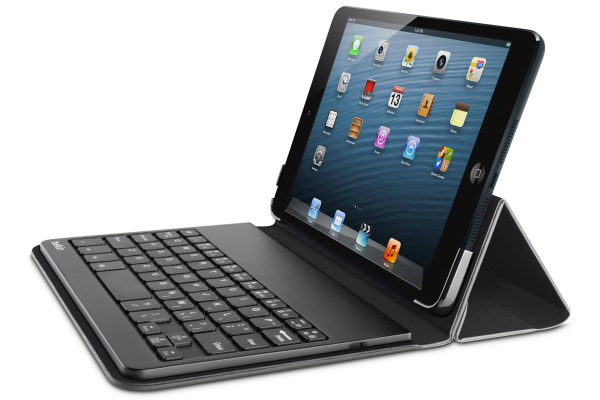
If you’ve tried an iPad mini, or just seen one, you’ll know the screen is a decent size and well suited to using like a tablet. It’s not quite so good for using as a laptop/netbook replacement (unless you have really good eyesight or like peering at things in a hunched-over manner), but that hasn’t stopped Belkin from rolling out a portable keyboard folio for it.
The Portable Keyboard Case connects to Apple’s device via Bluetooth and is a scaled down version of the keyboard the company sells for the full-sized iPad. If you’re the sort of person who likes to pretend you’re a giant, you’re going to love it.
The keyboard itself, which apparently offers well-spaced keys to minimize typing mistakes, can be removed to make it more comfortable to type on, and folds down flat when not in use. The folio has a camera lens cut-out so you can take sneaky photos of the ladies when in public places (it’s possible there’s another use for this, but I’m not sure what).
The keyboard offers around 155 hours active battery life and can be charged via USB. It’s available now and will set you back $79.99.
-

Apple iPad 4 review
Publié: novembre 14, 2012, 10:24pm CET par Wayne Williams
I’ve been thinking about getting a new tablet for a while. Although there’s nothing physically wrong with my iPad 2, I’ve been itching for a bit of new tech in my life and there are some truly excellent choices available this year, including the newer "new" iPad, the iPad mini, Microsoft Surface, and the Google Nexus 7 and Nexus 10. All of which are definitely worth considering.
A friend let me borrow his Nexus 7 for a week, during which time I realized a small tablet was not for me, so that also ruled out the iPad mini. The Nexus 10 looked appealing, and so was on my shortlist. Microsoft Surface I discounted because even though I now use Windows 8 daily, I still don’t really like it and the current lack of great apps for Surface is a bit of a deal breaker. Maybe in the future…
Birthday Wishes
In the end the choice came down to getting a 4th-gen iPad or the Nexus 10. On paper the difference in price seems considerable (the Nexus 10 is $100 cheaper), but then I factored in apps. I’ve purchased at least $400 of iOS apps over the years -- via iPhones, iPod touches and my iPad 2 -- and if I switch to Android, I’ll have to start my purchasing all over again. And of course not all the apps I use on iOS are available for Android. So I plumped for the new iPad (32GB, Wi-Fi only), which I purchased on the Apple site, with a little free case engraving.
A few days ago, just in time for my birthday, the iPad arrived, along with the SmartCase I ordered to protect it (although this hides the engraving on the iPad’s aluminum rear, it’s not a problem as Apple can add some free text to the back of the cover too).
First Impressions
The first thing I noticed on getting the tablet out of the box, was how similar to the iPad 2 it is. I couldn’t compare them side by side, as I’d sold my older tablet the week before, but turned off the latest iPad could easily have been the old one in new packaging. When I turned it on, however, the retina display quickly dispelled that notion. It’s bright, crisp and colorful, and although the 2048 x 1536 display isn’t technically as sharp as the iPhone 4S (264PPI versus 320PPI), and doesn't even compare all that favorably with the new Nexus 10's resolution (2560 × 1600), it’s still stunning.
The battery was 75 percent charged to begin, so there was no need to plug in. All I had to do was work my way through the getting started wizard and install my favorite apps. Charging the iPad simply involves plugging in the new Lightning connector, which is no better or worse than the old standard connector. I don’t have an iPad dock or other peripherals, so at least I don’t have to worry about replacing them or buying pricey adapters.
The new tablet feels solid, in a good way. It is noticeably heavier than my old one (by almost 60 grams) but the SmartCase means I don’t need to hold it to watch movies or even to type, so the additional weight never becomes an issue. The external buttons, of which there are four, are well placed and easy to access.
The A6X processor means the new device is much, much faster than the iPad 2, and graphically intensive games like Asphalt 7, The Amazing Spider-Man, and Mass Effect Infiltrator, run impressively smooth.
Core Features
Snaps taken with both the 5-megapixel rear camera and the 1.3MP front one are certainly decent enough, with a good level of detail in strong light and an impressive auto-macro mode. The tap to autofocus feature works really well, but the ability to take photos using the volume key could also be described as the option to include your fingers in every landscape shot you take, as your hand automatically covers the camera when tapping the button. It’s just plain awkward. To be honest though, I don’t ever intend to be the sort of person who goes out into the world taking photos on a tablet, so this doesn’t worry me too much. The new iPad unsurprisingly hasn’t improved the chats I’ve had using FaceTime, but this is an issue with my friends rather than the hardware. The quality of the video is much sharper though.
iPad 4 runs iOS 6 out of the box, although it does require an update to get it on to 6.0.1. There’s lots I don’t really like about the new OS (including Maps and the revamped App Store design), but I’m getting used to it. The ability to switch between open apps by swiping your hand left across the screen is a great addition, as are the other two multi-tasking gestures (pinching in with all your fingers will open the home screen, while flicking upwards will show the multi-tasking bar).
Browsing the web -- one of the reasons a lot of people will want a tablet -- is a very pleasant experience, and websites look great: crisp, clear and easy to read. Pages load quickly (to be fair I’m on a 100MB connection at home, which is a major factor) and it’s great to have tabbed browsing now. The option to save items for reading offline later is very handy too when using a Wi-Fi only device.
As I never had an iPad 3, the new version is a major jump forward from my old tablet. The retina display certainly wows, and the much faster CPU means I can really enjoy games and other processor intensive apps as they are intended to be. iPad still gets pretty warm when really pushed, but I’ve not burnt my legs using it (yet).
The Right Choice
Was it worth the upgrade from iPad 2? For me, yes. Faster, with better visuals and some clever touches. For other iPad 2 owners, who aren’t overly bothered about things like the Retina display, there isn’t such a pressing need to upgrade, especially given the price (£479.00 here in the UK; $599 for Americans).
There’s definitely no need to upgrade from an iPad 3. Am I happy with my choice of tablet -- unquestionably so. Do I think it’s the best tablet on the market? Personally, yes, but it's really just a matter of preference now, and the next time I come to upgrade it’s likely I'll be considering the competition's offerings much more closely.
Photo Credit: Wayne Williams
-

Apple's Samsung apology includes 'false material'
Publié: novembre 9, 2012, 7:49pm CET par Wayne Williams
 As expected, Apple has come in for some blistering criticism from the UK courts over its refusal to publish a straightforward apology stating that Samsung did not copy the iPad.
As expected, Apple has come in for some blistering criticism from the UK courts over its refusal to publish a straightforward apology stating that Samsung did not copy the iPad.The full ruling of the court of appeal hearing, published today, pulls no punches, describing Apple’s compliance with the newspaper advertisement order (in which it was instructed to publish an apology in several UK newspapers and magazines) as "lackadaisical at best". The recent statement published on its website was found to be even more serious as it contained "false material" and made out the case as about Samsung copying the iPad, when it wasn’t. (It was actually about whether Samsung had copied Apple’s registered design.)
Sir Robin Jacob, one of the three judges who presided over the case, notes in the ruling that instead of publishing the text as ordered, "Apple broke it up, interspersing it with text of its own devising", some of which was "false and misleading" and "clearly muddied the water and the message obviously intended to be conveyed by it".
Lies, Damn Lies
Apple inserted at the end of the apology:
However, in a case tried in Germany regarding the same patent, the court found that Samsung engaged in unfair competition by copying the iPad design. A U.S. jury also found Samsung guilty of infringing on Apple's design and utility patents, awarding over one billion U.S. dollars in damages to Apple Inc. So while the UK court did not find Samsung guilty of infringement, other courts have recognized that in the course of creating its Galaxy tablet, Samsung wilfully copied Apple's far more popular iPad.
Regarding the German case, the judge observes to be "false":
(a) "Regarding the same patent." No patent of any kind has been involved in Germany or here, still less "the same patent."
(b) As regards the Community Registered Design, the German Courts held that neither the Galaxy 10.1 nor the 8.9 infringed it. As to the 7.7 there was for a short while a German provisional order holding that it infringed. Whether there was a jurisdiction to make that order is very doubtful for the reasons given in my earlier judgment but in any event the order had been (or should have been) discharged by the time the Contested Notice was published.
(c) There is a finding and injunction, limited to Germany alone, that the 10.1 and 8.9 infringe German unfair competition law. But the statement is likely to be read as of more general application.
Regarding the US court case sentence:
That is misleading by omission. For the US jury specifically rejected Apple's claim that the US design patent corresponding to the Community Design in issue here was infringed. The average reader would think that the UK decision was at odds with that in the US. Far from that being so, it was in accordance with it.
With respect to the UK case:
This is calculated to produce huge confusion. The false innuendo is that the UK court came to a different conclusion about copying, which is not true for the UK court did not form any view about copying. There is a further false innuendo that the UK court's decision is at odds with decisions in other countries whereas that is simply not true.
Sir Jacob made clear what Apple has failed to in the published apologies: "The reality is that wherever Apple has sued on this registered design or its counterpart, it has ultimately failed".
Bad Script
As a result of all this disobedience the court ordered Apple to publish the correct statement, without any modifications or additions on its site, and awarded costs against the firm on an indemnity basis. This is higher than the normal, standard basis in order to show the "mark of the court's disapproval of a party's conduct".
When Apple published a new statement on the front page of its website at the end of last week, it added some JavaScript to essentially hide the message, forcing visitors to scroll below the apparent bottom of the page in order to see it. This coding was quietly removed today, although it’s not clear if it was done voluntarily, or at the court’s request. However, the statement is still largely invisible, as it can only be seen directly on a rather large display (it’s still completely out of sight on my 1920x1080 screen).
Is this the end of the matter now? Who knows. It depends whether the court feels Apple’s JavaScript stunt warrants a further order, and demands the notice be placed where it can actually be seen. Samsung will no doubt have issued a complaint, so don’t be surprised if this whole soap opera rumbles on for a while yet.
-

Microsoft claims 4 million Windows 8 copies sold in first 3 days, I say prove it
Publié: octobre 30, 2012, 8:20pm CET par Wayne Williams
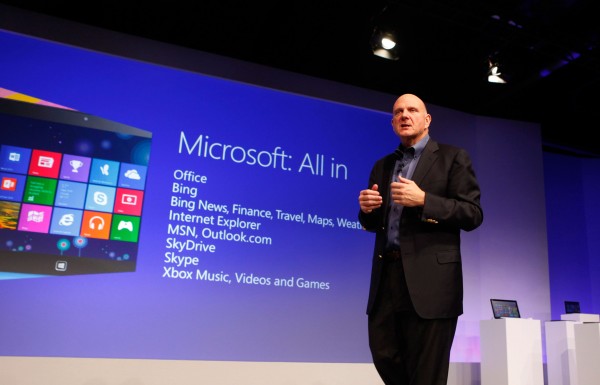
When it comes to Windows 8 sales, CEO Steve Ballmer obviously knows much better than I do how many copies of the new OS Microsoft is shifting. But, his claim that the company has sold four million upgrades since Friday, sounds suspect to me. Where is he getting this figure from? Is it from the Windows Upgrade Offer site? If so, then that’s great -- a phenomenal achievement.
If it’s from there and other sources, as the slide shown at BUILD 2012 suggests, well, I’m not sure. Getting those kind of sales figures from a wide range of retailers takes time and can only have been arrived at by making some phone calls to gauge response (or chasing up EPoS from selected sources), followed by a spot of calculator prodding and some guessing.
Does it take into account all the pre-orders? Presumably. Is it worldwide sales? I expect so.
Is it 4 million actual sales to actual people? We don’t know.
Ballmer says "4 million" and leaves it at that.
"Over the weekend we saw an incredible response around the globe to Windows 8 and to Microsoft Surface" Ballmer said at the Windows 8 Phone launch. "We're seeing preliminary demand well above where we were with Windows 7, which is gratifying."
Demand or sales? They’re not the same thing.
"We’re seeing retailers here in the United States and hardware manufacturers enthusiastic about the response", he claims. Define "enthusiastic."
"Laptop sales are up 20 percent over forecasts", Ballmer also asserts, earlier today at BUILD 2012. But he doesn't specify how many of those were Windows 8 devices or what the forecasts were. If they only expected retailers to sell a hundred laptops and they sold 20 percent more than that, it isn’t really a great achievement.
All companies bandy figures like this about, but without actually saying how Microsoft arrived at them, or providing any form of proof, I’m sorry but they really shouldn’t be taken as gospel.
I’m sure Windows 8 is doing all right. Selling moderately well. It might even have sold 4 million copies to date but exactly how, where and to whom remains a mystery.
-

Google revamps compose in Gmail -- now opens in a new window
Publié: octobre 30, 2012, 7:54pm CET par Wayne Williams
I love Gmail, but one thing frustrates me. I’m composing a message or a reply, and suddenly I need to check some details or copy some text from another email. That means saving the draft I’m currently working on, going into the other email I want, then returning to my new message and continuing from there.
It’s not a major problem, but it is a frustrating niggle, and I’m clearly not alone in thinking so, as Google is in the process of rolling out a change to Gmail that addresses this very issue.
Now when you start a new email, you are presented with a pop-out compose window that you can move about, allowing you to keep an eye on your inbox, search for something, or open old messages, without leaving the email you’re currently writing. It’s pretty much like the chat window, except much larger of course.
The controls you need to write your message are all still there, but hidden until needed, and Google has added the ability to insert inline images, which is handy.
The reply window has also been revamped, so it will fit better inline as part of your conversation. As Google puts it: "Replies take up much less vertical height, intelligently expand to fit your content, and always keep the recipients and other controls in view no matter how long your message gets".
A preview of the feature is being rolled out today so keep an eye out for it. You can find out more about the changes here, and also see what features aren’t currently available, but will be added soon.
-

Steve Jobs-designed luxury yacht unveiled
Publié: octobre 30, 2012, 2:36pm CET par Wayne Williams
Towards the end of Walter Isaacson's authorized biography, Apple founder Steve Jobs talks about a self-designed boat he’s having built for himself and his wife Laurene. He shows Isaacson his models, and architectural drawings, and of course it’s a typical Jobs affair, with obsessive attention to detail: In order to realize the idea of having walls of glass "forty feet long and ten feet high" Jobs gets the chief engineer of the Apple stores to create a special type of glass capable of providing the necessary structural support.
Prophetically he tells Isaacson, after admitting he’s still tinkering with the design even though construction has begun, "I know that it's possible I will die and leave Laurene with a half-built boat. But I have to keep going on it. If I don't, it's an admission that I'm about to die". He did sadly pass away before the yacht was completed, but a year later his creation, named Venus, has been unveiled at a shipyard in the Netherlands.
According to the Dutch website OneMoreThing, the yacht is between 70 and 80 meters in length, with an "exterior entirely made of aluminum so the ship is much lighter than other yachts". The decks are fashioned out of teak, there’s a sun terrace with a Jacuzzi, and the bridge is equipped with seven 27in iMacs. But, presumably the crew won’t be using Apple Maps for navigation.
The yacht took six years to design and build (Jobs worked on some of the details with French minimalist designer and architect Philippe Starck) and everyone who was involved in the vessel’s creation received an inscribed iPod Shuffle from the Jobs family as thanks.
You can watch a video of Venus’s unveiling here.
-

Get your Google back in Windows 8
Publié: octobre 26, 2012, 8:58pm CEST par Wayne Williams
If you’re the proud possessor of a copy of Windows 8, or you rushed out today to buy a brand new touchscreen device with it pre-installed, the first thing you’re going to need to do is configure it to suit your needs, and install all of your favorite software.
You’ll probably want to make installing a better browser a priority (no offense Microsoft) and Google has designed a version of Chrome especially for the new OS, with some customizations for touch screens, including larger buttons and the ability to keep the browser open next to other apps.
On top of that, the company has also designed a new Google Search app, with swipe-friendly search and image previews, and a new voice search option. In a particularly nice touch, the web giant’s famous occasional doodles will even appear on the app’s tile on the Start screen.
To help you find and install the two new apps, Google has created a simple website with downloads to both. Click either of the links to find out more about the app, or add it to Windows 8.
-

Google adds visual terrain to Maps
Publié: octobre 26, 2012, 7:05pm CEST par Wayne Williams
With all the Maps and Street View improvements that Google’s been rolling out lately you’d think the company had something to prove. Apple might be able to fix some of the many issues that plague its fledgling service, but it’s going to struggle to ever catch up if Google continues to advance its mapping tool at the rate it has been recently.
Google’s latest change is to the basemap you see when you open the service in your browser. Whereas before a zoomed out view of the world showed a fairly basic map, with borders, country names and some sparse vegetation, now it shows a more colorful view, with detailed terrain, making it much easier to identify forests, deserts, and mountain ranges.
In one of the example images shown in a new Google blog post, you can clearly see the deserts of Pakistan, the rocky Himalayas, and the jungles of Laos. Another image, covering the area north of Vancouver, Canada, shows the mountainous and rocky terrain responsible for cities and settlements being developed further south.
It’s not just vegetation and terrain that’s been added to the maps. Major natural features, such as the Amazon Basin, the Gobi Desert and the Salar de Uyuni in Bolivia, are now clearly labeled, to make them easier to find.
-

Apple now owns The Beatles' iconic record label logo
Publié: octobre 26, 2012, 5:56pm CEST par Wayne Williams
Steve Jobs was a huge fan of the Beatles and would no doubt have been pleased by the news that his company finally now owns the Granny Smith logo of the band’s holding company, Apple Corps.
The two Apple firms faced off in court regarding trademark infringements three times in a long running dispute, and although the Beatles’ company won the initial two cases, in 1981 and 1991, the third case was settled in Apple Inc.’s favor in 2007 when, for an undisclosed fee, Jobs’ company secured the rights to all Apple trademarks and logos, provided they agreed to license them back to the music company. Three years later Jobs successfully brought the Beatles back catalog to iTunes.
The rights to the Beatles’ recording logo was the final loose end and yesterday, a year-and-a-half after the request was filed, it became a registered trademark of Apple Inc.
Another firm with a similar name, Apple Box Productions Sub Inc., made a legal bid against the acquisition but (unsurprisingly) was unsuccessful.
Photo Credit: Apple
Corps.Inc. -

Raspberry Pi SoC drivers open sourced
Publié: octobre 25, 2012, 5:01pm CEST par Wayne Williams
It’s something that programmers of the popular credit card-sized ARM GNU/Linux box have been asking after for a while now, and finally that wish has come true. Broadcom has agreed to make its mobile GPU drivers open source, releasing them under a 3-Clause BSD license.
What that means for developers, is it will now be much easier to implement Wayland EGL client and server support, and allow anyone attempting to port a different OS to Raspberry Pi to take full advantage of the graphics core.
Announcing the news in a blog post, Alex Bradbury, the Raspberry Pi Foundation’s lead Linux developer says: "The source is available from our new userland repository on GitHub. If you’re not familiar with the status of open source drivers on ARM SoCs this announcement may not seem like such a big deal, but it does actually mean that the BCM2835 used in the Raspberry Pi is the first ARM-based multimedia SoC with fully-functional, vendor-provided (as opposed to partial, reverse engineered) fully open-source drivers, and that Broadcom is the first vendor to open their mobile GPU drivers up in this way".
The Raspberry Pi’s GPU firmware is still only available in binary form.
-

ITC judge says Samsung infringes Apple patents
Publié: octobre 25, 2012, 3:35pm CEST par Wayne Williams

Another day, another patent story. After a spot of bad news for Apple, comes something good for the Cupertino, Calif.-based corporation. A United States International Trade Commission judge has decided in a preliminary ruling that Samsung infringed four of Apple's intellectual property patents.
The ruling will be considered by the full commission, with a result expected in February, but it’s an important, albeit early, victory for Apple as the ITC has the ability to block the import of infringing products into the US.
Judge Thomas Pender determined that Samsung violated four of Apple's patents (three for software, one for hardware), but didn’t infringe on another two that were included in the complaint.
It won’t make a huge amount of difference to Samsung even if the products in question do get banned from sale, as the patents only affect some of its older devices.
You can read the full preliminary ruling here.
Photo Credit: Sebastian Duda/Shutterstock
-

Microsoft Surface gets mixed early reviews
Publié: octobre 24, 2012, 10:44pm CEST par Wayne Williams
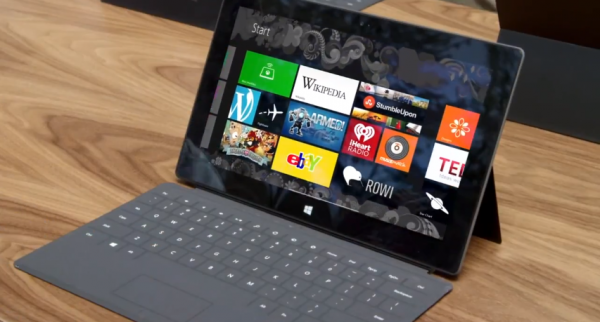
The first Microsoft Surface reviews are beginning to surface and they’re a mixed bag to say the least. Since all my money is going towards a new 4th gen iPad, and Microsoft is happy to send me a copy of Windows 8, but not a Surface tablet (sorry, Surface PC), I can’t give you my own insightful opinion on the device, but I can tell you what the early reviewers are saying.
And that early feedback is good (mostly) but far from being universally glowing. Pretty much all of the reviews point out the one thing we knew was going to be problem: that there just aren’t anywhere near enough apps at the moment. But there are other issues that we didn't know about, such as that it soon gets very heavy, the cameras are poor, and it can be sluggish at times. Here’s just a selection of what those early reviewers are saying:
Wired. Matthew Honan at Wired likes the tightly ingrained kickstand, but queries why the small fingerhold used to open it is on the left-hand side of the device when "most people are right-handed". The touch keyboard he describes as "quite fantastic" but says it comes with a "learning curve" and took him three days to master. He’s very scathing about the front and rear 720p HD cameras which, he calls junk. "There’s no other way to put it. The camera has a significant lag time when you’re taking shots, and the image quality looks about like the last photo you snapped with your Razr V3".
His review also notes that while the device is great for watching movies, when it comes to displaying text it’s "lousy for reading when you hold it in portrait mode (just like a book!) which, to me at least, is the more natural way to hold a device when you’re reading. Because it’s so long, those 1.5 pounds really start to feel heavy. It gets uncomfortable quickly". He's also confused as to why the Windows RT device has a Desktop mode. "There are a handful of system applications and a suite of Office apps. But otherwise, it seems like it’s just going to cause confusion".
The Verge. Over at The Verge, Joshua Topolsky notes the kickstand "has extremely sharp metal edges, which caused it to scratch a couple of wooden surfaces I found myself placing the Surface on. It's also not very useful on your lap -- unless you like to struggle". Surface’s size is a problem for him too: "At 10.81 inches across (in landscape) and 0.37 inches thick, it's not really that comfortable to hold in landscape for extended periods, and in portrait it's laughably tall".
And: "After using it for an extended period of time, it's hard to imagine bedtime reading or casual throw-it-in-a-bag use for this device". Photos taken with the cameras show, he says, "surprisingly good low-light performance, but are otherwise grainy and unremarkable". But for video, the "front-facing shooter is quite good, with a very wide field of view, making for group conversations that don't require sardine-like packing of participants".
His conclusion, however, is slightly damning: "The whole thing is honestly perplexing. If this device is not as good as (or better than) the best tablet, and not a complete alternative to a laptop -- who is this for? What is it supposed to be?"
New York Times. David Pogue at the New York Times calls Surface a sleek tablet marred by clumsy software. While his review praises the hardware, he calls the preview 2013 versions of Word, Excel and PowerPoint "workable, but sometimes sluggish" and complains about the lack of apps. "There’s no Facebook, Spotify, Angry Birds, Instagram, Draw Something or New York Times app. The total in the United States is about 3,500 apps so far; many are bare-bones or junky".
Like Honan he is confused by the desktop component of RT. "Both Surface tablets, and indeed Windows 8 itself, suffer from an insanely confusing split personality. Beneath the colorful, edge-to-edge world of RT apps, the menus, icons, taskbar and overlapping windows of the traditional Windows desktop are still there. On the Surface, that old desktop pops bafflingly and unnecessarily into view whenever you use the Office programs".
He also notes: "Little inconsistencies and bafflements are everywhere. Such as the way Word constantly informs me that 'there is insufficient memory or disk space.' (Well, gee, Microsoft -- whose fault is that?)".
CNET. Over at CNET Eric Franklin lists the bad points as: "The tablet has sluggish performance, its Windows Store is a ghost town, Metro has a steep learning curve, and the Desktop interface feels clunky and useless", but gives the tablet three and a half stars out of five, saying "Metro interface is innovative, elegant, powerful, and versatile. The tablet feels strong and well-built, includes Office 2013, and rich video and music services. Its keyboard cover accessories are the best ways to type on a tablet, period".
ITProPortal. Joel Santo Domingo at ITProPortal notes: "Typing on the Surface while it sits on your lap is feasible, but only just. The keyboard flap may reach to and over your waistline, which may be awkward". However, he is mostly positive, summing up his review thus: "Given the downsides, particularly the limited selection of apps in the Windows Store, we're not about to pin an award on the Surface -- but we see the device's potential".
WSJ. At the Wall Street Journal, Walter S. Mossberg describes the new tablet as "beautifully and solidly built and it's the purest expression of Microsoft's new Windows 8 touch-screen operating system". He likes the device, but found flaws with the keyboards, observing: "They are almost useless on your lap. There is no hinge to keep the screen upright and the kickstand works poorly on your legs".
He also complains about the "paucity of apps for the new touch interface", the "mediocre battery life," and the cameras which he says "took only fair pictures". He also ran into "a number of bugs while testing, some serious. All but one notable one were resolved by the time I wrote this review".
AnandTech. AnandTech’s Anand Lal Shimpi is much more positive about Microsoft’s tablet, saying: "Surface is very well built and extremely well designed. It’s easily among the best built products I’ve had the opportunity to handle, and definitely puts a lot of earlier attempts from far more experienced companies to shame". His only real complaint is "you know the next iteration of the device is likely going to be appreciably better, with faster/more efficient hardware and perhaps even a better chassis".
Ars Technica. Peter Bright at Ars Technica picks up on an issue that Anand Lal Shimpi also singled out -- the power connector: "The magnets are so strong that the Surface aggressively grabs the connector, snatching it away from my grasp. It doesn't, however, seat the connector properly within its receptacle, so the system can't actually charge. I have to jiggle the thing and reseat it every time". He likes the tablet in general, citing in particular the top notch build quality and great touch cover, but does note that both the touch and type covers "have poor touchpads".
Bright also complains about the lack of NFC, GPS, and 3G/4G, saying it "strikes me as peculiar because of Microsoft's claimed goal of using Surface to provide the best Windows experience. Perhaps we can ignore NFC, but the lack of GPS and WWAN connectivity means that apps such as Bing Maps are simply less useful than they might otherwise be".
He also singles out the lack of apps as an issue: "The only third-party applications that will run on Windows RT are those that use the Metro interface and are distributed through the Windows Store. At the moment, there just aren't that many applications, and many of the ones that exist are mediocre".
So that’s what the reviewers are currently saying. If you were thinking of buying Surface, have the reviews changed your mind, or are you still keen to be an early adopter of Microsoft’s tablet? Leave your comments below.
If you do buy Surface and would like to review it for BetaNews -- we love reader contributions -- please contact Joe Wilcox -- joe at betanews dot com.
-

Apple’s new products are all about the competition
Publié: octobre 24, 2012, 7:33pm CEST par Wayne Williams
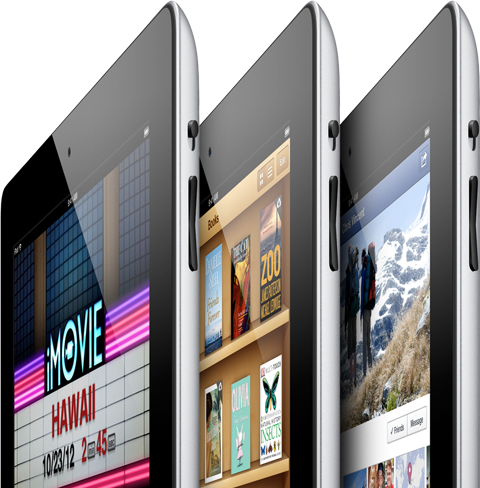 To answer my colleague Joe Wilcox’s question, I won’t be buying an iPad mini. I will however, be shelling out on a 4th gen iPad. I already own an iPad 2, and was thinking of upgrading to the 3rd gen version, but I knew an update was likely. Even though Apple only rolled out the most recent iPad in March, there were a few clues that suggested a sooner-than-usual upgrade was on the cards.
To answer my colleague Joe Wilcox’s question, I won’t be buying an iPad mini. I will however, be shelling out on a 4th gen iPad. I already own an iPad 2, and was thinking of upgrading to the 3rd gen version, but I knew an update was likely. Even though Apple only rolled out the most recent iPad in March, there were a few clues that suggested a sooner-than-usual upgrade was on the cards.Firstly, the Lighting port. On the accessories front alone it’s important for Apple to transition its devices to the new connector as quickly as possible, which means putting it in all of its relevant hardware. Secondly, the 3rd gen iPad gets incredibly hot when doing graphically intensive tasks. The new A6X chip will, I suspect, greatly reduce that problem. Making the iPad faster (while keeping the price the same) will also help position it a little further away from the new mini. However, the main reason for the upgrade is much more straightforward: it kicks the hell out of the competition.
During the iPad portion of yesterday's presentation, Tim Cook told us that Apple's device totally dominates the tablet sector. It’s responsible for 91 percent of tablet web traffic, and 94 percent of Fortune 500 companies use it, he said. And the 3rd gen iPad, released a mere seven months ago, is now Apple’s fastest-selling tablet. The top selling tablet in the world, in fact. Woo-hoo!
But before we got much of a chance to celebrate the new device’s success, Apple’s SVP of Worldwide Marketing, Phil Schiller, turned up on stage and promptly threw it under the bus (sadly only figuratively, there was no actual bus on stage) by rolling out a twice-as-fast newer version. Ouch. "Hey ‘new’ iPad owner -- here’s a quick swift kick to your nether regions, no need to thank us it’s all part of the way we roll".
Making a brand new, hugely successful product obsolete so quickly takes balls, but it was something Apple had to do. Microsoft will launch Surface on Friday and other companies will debut their Windows 8 tablets very shortly, too. Android devices are getting better, and bigger all the time. In short, the tablet market is about to get very crowded, and Apple needs to make sure iPad was the one generating all the headlines and sales.
The iPad mini is, of course, all about reacting to what is already out there. Allowing Apple to go head to head with its biggest rivals -- not on price, but on size. Regular people know what an iPad is. They don’t know what a Nexus 7 is. Put the two devices in a shop side by side, and customers will likely buy the iPad mini. Yes, sure, it’s slightly more expensive, but it’s better to buy a name you know isn’t it? The screen is bigger, and you’re clearly getting a better product, the real deal…
During the presentation, Phil Schiller repeatedly bashed the Nexus 7. Although he didn’t actually name it he showed us the tablet next to the iPad mini, told us how using it wasn’t "a great experience", talked about its inferior screen size and how the device was thicker and made of -- spit, spit -- plastic. Most importantly of all, he pointed out that the Android tablet's apps were just scaled up mobile phone ones, not proper dedicated tablet apps, like the iPad mini has. It was a good old fashioned kicking, and a well-timed one.
Apple knows it has a fight on its hands if it hopes to maintain its market dominance, and yesterday we saw just how hard, and how ruthless, it’s prepared to be to stay on top.
-

Good news for Samsung: Apple trial patents ruled invalid
Publié: octobre 24, 2012, 4:51pm CEST par Wayne Williams

Uh-oh. While Apple was launching all its new and improved products yesterday, bad news brewed in the background. I just hope the company hasn’t pre-emptively spent any of the $1.05 billion it was awarded from Samsung recently, because the US Patent and Trademark Office has just ruled that 20 patents relating to overscroll technology (the bounce effect that happens when you scroll beyond the edge of an image or document) are invalid, and that could spell problems for the Cupertino, Calif.-based corporation.
According to Groklaw, "the notorious rubber-band patent [Apple's] been going after Android with, has just been tentatively rejected by the USPTO on re-examination. Apple has two months, until December 15, 2012, to respond and try to save it".
The bounce-back patents, which were investigated following an anonymous request back in May, were rejected due to a lack of novelty -- there was not deemed to be enough of an inventive step between the prior technology and Apple's patent. Samsung was quick to seize on the preliminary finding, submitting it in a late night filing to Judge Lucy Koh, who is currently considering appeals.
The preliminary ruling isn’t binding (there’s still a lengthy process ahead), but it might be enough to persuade Judge Koh to overrule the jury on this matter, allowing Samsung to reintroduce the overscroll effect into its devices in the US. This will also be good news for other smartphone manufacturers who have fallen foul of the ‘381 patent, including HTC.
While this is a potential setback for Apple, the company still has plenty of patents in play, so it’s unlikely to have a major impact on the result of the trial, but it could reduce the amount of money Samsung has to pay. It could also be just the first of several such findings.
In further good news for Samsung, according to Reuters, a Dutch court ruled today that the Korean company didn't infringe on an Apple multi-touch patent with its Samsung Galaxy smartphones and tablets.
Photo Credit: JustASC/Shutterstock
-

Street View uses Trekker to gather views of the Grand Canyon
Publié: octobre 24, 2012, 4:19pm CEST par Wayne Williams
Google is intent on making as much of the world available in Street View as possible. It recently added 250,000 miles of roads and additional special collections, and even provided a startling glimpse inside one of its own data centers.
The company has several methods of gathering this visual imagery, including a fleet of Street View cars, trikes and snowmobiles. Its latest innovation is Trekker, a backpack with a camera on top, which is currently used to capture 360-degree photos of the Grand Canyon.
According to this blog post, "The Trekker -- which its operator controls via an Android phone and automatically gathers photos as he walks -- enables the collection of high-quality imagery from places that are only accessible on foot".
Provided the pictures all come out cleanly, and don’t have the back of the operator’s head in them, this is likely to be just the first of many such foot-based explorations.
-

YouTube doesn’t hate Muslims: streams the Hajj pilgrimage live
Publié: octobre 24, 2012, 2:55pm CEST par Wayne Williams
Google’s standing in the Muslim world isn’t great right now. The company’s refusal to pull the offensive The Innocence of Muslims video from YouTube has led to lots of criticism around the world. The Saudi Arabian government even led calls for a new international body to censor the internet purely as a result of Google’s stance.
However, perhaps in an effort to appease angry Muslims, Google has announced that from today it will stream the ritual of Hajj (the world’s largest pilgrimage) live from Mecca, on the Saudi Ministry of Culture and Information's YouTube channel.
As Google explains in a blog post, "The Hajj represents one of the five pillars of Islam; it requires all Muslims around the world who are able-bodied and can afford it to perform the pilgrimage once in their lifetime".
Muslims in Iran, Pakistan, or Afghanistan won’t however, be able to watch the live stream, as YouTube is still banned in those countries.
-

UK ISPs are told to block more pirate sites
Publié: octobre 23, 2012, 5:58pm CEST par Wayne Williams
 The music industry has tried various things to combat piracy over the years, ranging from actually selling music online, to suing alleged file sharers/customers. In the United Kingdom, the British Phonographic Industry is trying to force internet service providers to block access to infringing sites.
The music industry has tried various things to combat piracy over the years, ranging from actually selling music online, to suing alleged file sharers/customers. In the United Kingdom, the British Phonographic Industry is trying to force internet service providers to block access to infringing sites.The Motion Picture Association started the trend last year by going to the courts and asking them to block access to Newzbin 2, a members-only site sharing music and video. The BPI followed its approach, successfully getting the High Court to order ISPs to block access to The Pirate Bay, and now it’s got three more major torrent sites in its crosshairs.
According to the BBC, the BPI reportedly asked six ISPs -- BT, Virgin Media, Sky, O2, EE and TalkTalk -- to voluntarily block access to Kickass Torrents, H33t and Fenopy, but having (hardly surprisingly) not got its own way, the organization is now set to return to the courts in a bid to get its request turned into an order in time for Xmas.
Speaking to TorrentFreak, a spokesman for the UK Pirate Party said: "It looks like web blocking is now a reality in the UK -- the BPI have found a way to censor sites they don’t like. The excuse is piracy, which totally disregards the legitimate uses of torrent sites, and conveniently neglects to mention that they are a major platform for independent musicians. Essentially, it’s the classic behavior of monopolistic corporate bullies who want to stamp out competition".
Although the court-ordered blocking of The Pirate Bay did initially have a major effect on traffic to the site from within the UK, many torrent users simply went elsewhere, accessed the site through a proxy, or used one of the many mirrors that were set up to get around the block. The BPI clearly knows it can’t stop hardened pirates from accessing illegal content, but it can reduce the options available to more casual downloaders and that, for the moment at least, seems to be its primary tactic.
Photo Credit: Regissercom/Shutterstock
-

Google improves searches in News
Publié: octobre 23, 2012, 4:03pm CEST par Wayne Williams
Google News is one of the search giant’s more contentious services (Brazil's National Association of Newspapers recently blocked it from using its members' content because the service allegedly drives traffic away from their websites), but there’s no question it’s an incredibly useful resource, pulling content from a wide variety of sources.
Last year Google made it easier to scan for stories, and this year it’s implementing some useful changes to the News search results pages.
Now when you run a search on News, you’ll see the one main story, with related articles from other sources collapsed into "news clusters" that can be expanded with a single click. According to Rudy Galfi, Google News’ product manager: "This improvement makes it much easier to scan through the search results to find just the collection of news coverage you’re looking for".
In addition, some of these expanded news clusters will include a bar of videos and photos related to the story’s content.
Finally, the layout has been tweaked, so the cluster image now appears on the left with the source information moved to just below the article links.
-

Tech companies pay next to no tax in United Kingdom
Publié: octobre 22, 2012, 7:26pm CEST par Wayne Williams

Despite making huge sums of money in the United Kingdom, many of the major tech companies based there pay surprisingly little tax. Exactly how little has only just started to come to light, thanks to investigations by several national newspapers.
The latest company to be exposed for paying a pittance in UK tax is eBay which, according to the Sunday Times newspaper, paid just £1.2m in 2010, despite its UK subsidiaries generating sales of close to £800m, and making an estimated profit of £181m.
Facebook paid just £238,000 in UK tax last year on sales of £20.4m, according to the Evening Standard newspaper. Although independent analysts believe the social network’s actual turnover was closer to £175m.
According to The Telegraph, Google paid just £6m on earnings of £395m in 2011, and between 2004 and 2010, paid a total of just £8m in UK corporation tax. Amazon was revealed by the Guardian newspaper to have paid no corporation tax at all over the past three years, despite generating sales of more than £7.6bn.
The companies all manage to avoid paying tax by using legal loopholes. Facebook and Google divert their sales through Ireland (a method called the Double Irish), which has a lower corporation tax than the United Kingdom, while eBay and Amazon divert sales through Luxembourg. Apple apparently also uses both Ireland and Luxembourg to reduce its tax liabilities.
The issue is hardly unique to the United Kingdom. In the United States the Senate's Permanent Subcommittee on Investigations recently criticized Microsoft and Hewlett-Packard for using places such as the Cayman Islands to avoid paying a fortune in taxes. And an article in the New York Times estimates that Apple’s federal tax bill would have been $2.4 billion higher last year without the use of tax avoidance schemes.
Do these tactics, or more specifically the figures involved, surprise and/or anger you? The companies are doing nothing legally wrong, but what about morally? Please leave your comments below.
-

Just 45 percent of the world's population subscribes to mobile services, and that's not much
Publié: octobre 19, 2012, 6:33pm CEST par Wayne Williams
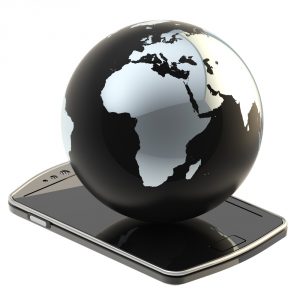 According to the results of a worldwide, multi-year study conducted by industry body GSMA, the total number of global mobile connections will reach 6.8 billion by Q4 2012.
According to the results of a worldwide, multi-year study conducted by industry body GSMA, the total number of global mobile connections will reach 6.8 billion by Q4 2012.However, the number of actual unique mobile subscribers is much less. By stripping out machine-to-machine (M2M) communications and inactive SIM cards, and factoring in that consumers apparently use an average of 1.85 SIM cards each, GSMA was able to arrive at a figure of 3.2 billion mobile subscribers, or around 45.7 percent of the world’s population.
Taking into account various factors, the report estimates that this figure will rise to four billion in the next five years, which sounds like good growth, but isn’t really, seeing as the global population will likely expand from 7 billion to 7.4 billion during the same time frame. The biggest growth areas will, unsurprisingly, be in developing countries and rural areas.
The report finds that Europe has the highest mobile adoption in the world, with United Kingdom, Germany, Denmark and Finland touching close to 90 percent subscriber penetration. The United States has 69 percent, Japan 88 percent and Russia 73 percent. Africa currently has the lowest usage (just one in three people with access to a mobile service make use of it). In China, the world’s largest mobile market, the figure is 43 percent, but set to rise to 52 percent by 2017.
Of course, as GSMA notes in its report, a significant portion of the world’s population isn’t connected to a mobile service for good reason. The young, the old, disabled, incarcerated or unemployed, account for an estimated 2.3 billion, and those with no network coverage account for an additional 1.5 billion. If you take those two groups out of the equation, global unique subscriber penetration rises to 68 percent.
The research was conducted in 2009, 2011, and 2012 and across 39 countries (around 75 percent of all global connections).
Photo Credit: glossyplastic/Shutterstock
-

Google adds 25 million new building footprints to Maps
Publié: octobre 19, 2012, 3:34pm CEST par Wayne Williams
When I opened Apple Maps in iOS 6 for the first time, I was struck by how basic the actual maps are. Zooming in shows the roads, and road names, but it’s all very simple. By contrast, when you zoom into Google Maps you often get to see the buildings on either side of the roads, which can help to get orientated and locate important landmarks.
Google today boosted this subtle but incredibly handy navigation feature by adding a further 25 million new algorithmically-created building footprints to the desktop and mobile versions of Maps.
The additional buildings appear in various major metropolitan regions of the United States, including Houston, Los Angeles, Chicago, Miami, and the San Francisco Bay Area, and were generated using aerial imagery and computer vision techniques to automatically determine the shapes and heights of the buildings.
In the blog post announcing the new additions, Google states that this expansion is part of its "ongoing effort to provide you with maps that are as comprehensive as possible". Unlike, say, those provided by a certain rival company…
-

Alto, AOL's cloud-based mail service, launches in limited preview
Publié: octobre 18, 2012, 5:37pm CEST par Wayne Williams
Changing your email address can be a major pain. You’ve got to tell everyone about it, move your emails from the old account to the new one and so on. I know people who’ve been using Hotmail for the better part of a decade, despite loathing it, just because they don’t want the perceived hassle of switching to another service (or even upgrading to Outlook.com).
AOL’s new cloud-based email tool, Alto, is designed to avoid this problem by working alongside, or rather on top of, the main webmail services, rather than replacing them. You don’t need to sign up for a new email address, you just log in with your existing AOL, Gmail, Yahoo, or iCloud details. Once you’re in, Alto will help manage your inbox and cut back on clutter.
Just as you might sort your real life mail into separate piles for personal letters, bills and junk mail, Alto’s trick is to go through your inbox and create separate stacks for different types of messages, providing some much needed organizational relief.
Personal messages, emails with photos, emails with attachments, retailer mailing lists and social network notifications all get put into their own pile, which you can access from the opening page, and you can create stacks for anything you like based on sender, recipient and keywords.
"We built Alto for people who believe, as we do, that organization is beautiful, who are overloaded with email and aren't happy with the status quo of existing email experiences," Joshua Ramirez, AOL senior director explains. "The way we use email has changed radically over the years, but the core email application experience hasn't. We've taken a deep look at how people use email now, and designed an application around that reality. When you sort through physical mail, you put it into stacks because it's a natural way to decide what's important, what's junk, and what to save for later. We wanted to recreate that experience with Alto, but make it intelligent and automatic, to easily deal with the hundreds of emails we get every day."
Alto is currently only available in limited preview (it’s due to open to the public early next year) but you can register your interest here. From what I’ve seen so far (I’m still waiting for my invite), it looks pretty good, with a clean, intuitive interface that places your inbox on the left and stacks on the right, making it very easy to sort messages.
By taking a visual approach like this, AOL is clearly hoping Alto will prove to be a hit on touch-screen tablets like Microsoft Surface.
-

More bad news for Apple as it loses appeal in Samsung case
Publié: octobre 18, 2012, 4:25pm CEST par Wayne Williams
 Apple today lost an appeal against the UK ruling that found rival Samsung's Galaxy Tab did not infringe its design rights. The original case, in which Judge Colin Birss declared Samsung’s tablets were not cool enough to be confused with the iPad, found in favor of the South Korean company and ordered Apple to publish a notice on its website and in various print titles (for a minimum of six months), informing visitors and readers that Samsung did not copy the design of Apple’s tablet.
Apple today lost an appeal against the UK ruling that found rival Samsung's Galaxy Tab did not infringe its design rights. The original case, in which Judge Colin Birss declared Samsung’s tablets were not cool enough to be confused with the iPad, found in favor of the South Korean company and ordered Apple to publish a notice on its website and in various print titles (for a minimum of six months), informing visitors and readers that Samsung did not copy the design of Apple’s tablet.The Court of Appeal’s review of the case upheld this ruling, meaning that Apple must comply with the original order. And just for a little additional salt/wound rubbing, one of the three appeals judges, Lord Justice Kitchin, stated that the typeface used in the notices must be no smaller than 14 point Ariel.
An understandably jubilant Samsung released the following statement:
We welcome the court’s judgment, which reaffirmed our position that our Galaxy Tab products do not infringe Apple’s registered design right. We continue to believe that Apple was not the first to design a tablet with a rectangular shape and rounded corners and that the origins of Apple’s registered design features can be found in numerous examples of prior art. Should Apple continue to make excessive legal claims in other countries based on such generic designs, innovation in the industry could be harmed and consumer choice unduly limited.
Another of the appeal court judges, the iPad owning Sir Robin Jacob, said of the ruling: "Because this case (and parallel cases in other countries) has generated much publicity, it will avoid confusion to say what this case is about and not about. It is not about whether Samsung copied Apple's iPad. Infringement of a registered design does not involve any question of whether there was copying: the issue is simply whether the accused design is too close to the registered design according to the tests laid down in the law. So this case is all about, and only about, Apple's registered design and the Samsung products".
In the United States, Samsung is currently appealing the outcome of the high profile copyright case in which Apple was awarded almost a billion dollars in damages for patent and design infringements against the iPhone.
Photo Credit: Sebastian Duda/Shutterstock
-

Google CEO Larry Page speaks in public for the first time in months
Publié: octobre 17, 2012, 6:16pm CEST par Wayne Williams
Larry Page, Google’s CEO, was forced to cancel all of his public speaking engagements back in June when a mystery ailment caused him to lose his voice. It wasn’t known when (or indeed if) Page would make appearances again, but the question was answered yesterday when he took to the stage at the company's annual Zeitgeist conference in Paradise Valley, Arizona.
Still, clearly suffering with a hoarse voice, and taking sips of water in between questions, he discussed various topics, beginning with how he gets really excited about the things that Google can do to seriously change the world, citing Search and Books as prime examples. Page also mentioned Maps: "We said it would be really nice to have a virtual representation of the real world that was accurate. Seven years later we’re kind of almost there, and we’re excited that other people have started to notice that we’ve worked hard on that for seven years". His subtle dig at Apple’s mapping catastrophe raised an appreciative laugh from the audience. When asked if Google was working on an iOS app, he gave an evasive answer and moved on.
Page also discussed self-driving cars, how Google chooses which markets to enter, and the antitrust issues the company currently faces, along with debates about privacy policy changes.
When asked about intellectual property issues he replied: "We see free speech as being really important, we see an Internet that can innovate as being really important and, in general, we should just be working with content industries to solve these problems. I think in general we don’t see regulation as a great source, or legislation, as a great solution for these problems".
He then described himself as being "cautiously optimistic" on the issue, adding "I think it’s important for technology companies to cause people who are making intellectual property to be successful. We’ve done a lot of work on YouTube to let people identify their own content and monetize it, and I think those kind of things are very important".
Other topics Page discussed included payments (specifically Google Wallet), Google’s role in education, and how the search ecosystem can improve by using information from other services like Maps and Google+. "Social data is obviously important and useful for that," he said. "We love to make use of that in every way we can".
Although he was quite cagey at times, and avoided answering certain questions (including a direct one about his illness), Page coped with the 40 minute grilling well, hopefully a sign that he’s now well on the way to recovery.
-

Google opens the door (virtually) to its data centers
Publié: octobre 17, 2012, 5:24pm CEST par Wayne Williams
Ever wondered what the inside of Google’s high-tech data centers look like? Or fancied taking a stroll around the server floor -- a place where only a select group of the company’s employees are allowed to tread? Well, the good news is now you can, virtually at least.
No, Google hasn’t fully unleashed its Street View trikes inside the data centers (more on that in a second), but it has given photographer Connie Zhou unrestricted access to them. The result is a website filled with striking, and surprisingly colorful high-res images of some of the most advanced server networks on the planet.
The Where the Internet lives website lets you explore the technology, meet some of the people who work in the centers, and get the low-down on each of the eight featured places. You can scroll left and right through the photos, zoom in and out, read captions and get additional information.
If you do want to take a virtual stroll around one of the data centers, the facility at Lenoir, North Carolina has obligingly opened its doors to Street View, and will let you explore the inside and outside of the building. There’s also a YouTube video of it.
You can find out more about Google’s data centers and the history and evolution of the company’s infrastructure by reading Steven Levy’s exclusive Google-sanctioned story on Wired.
-

Your search results may vary -- why I switched from Google
Publié: octobre 17, 2012, 4:13pm CEST par Wayne Williams
Search engine DuckDuckGo released a video a few days ago that shows how Google personalizes results for all signed in and signed out users. It asked 131 people to search for the same Election related topics ("abortion", "gun control", and "Obama") on Google at the same time, and most of them received slightly different results.
That Google personalizes results in this way is hardly new information. The company has been doing it since 2009 and Eli Pariser covered the topic in depth in his 2011 book, The Filter Bubble (a great read). He also gave an enlightening Ted Talk on the subject in which he observes that "the Internet is showing us what it thinks we want to see, but not necessarily what we need to see."
Filter bubbling is widespread -- it’s far from limited to Google; most big web corporations do it to some degree -- and although for the most part it’s invisible "behind-the-curtain" tinkering, just knowing that it’s going on irritates me at a deep, primal level. I don’t want Google shaping my results any more than I want my ISP shaping my traffic.
I know, based on comments I’ve read and conversations I’ve had, that I’m not alone in wishing there was an option to completely turn off personalization on Google. That there was a way of getting straightforward results to a query without details like where I am, what browser I’m using and who my friends are and what they like, getting in the way. Yes, I’m aware that Google allows signed-out users to opt-out of these personalized searches (all you need to do is go to here and click ‘Disable customizations based on search activity’) but I clear out my browser cookies on a daily basis, and so need to repeat the opt-out process every time, which is annoying.
It’s not just personalization that affects the results being displayed, either. Google recently started adjusting the ranking of pirate sites to please the entertainment companies and while that has zero impact on me, it’s another example of the sort of tampering that goes on behind the scenes to change what information appears when I search for something.
So after thinking about doing it for a while, I finally decided five days ago to switch from Google to DuckDuckGo (I've used the site previously, but never as my main search source). The results have mostly been spot on, so far, but they aren't -- if I’m honest -- always as comprehensive as I’d like. Fortunately, in the rare instances when I can’t find the results I want, the service allows me to run the same search on Google, Bing or another engine. So while I’ve given up Google Search for everyday use, I haven’t yet been able to totally abandon it. I do, however, really like that my results are now the same wherever I search (and whatever devices I search on) so I’m going to keep persevering with it.
Have you tried DuckDuckGo? If so, how have you found it, and what was your reason for making the switch?
-

Austrian skydiver sets live view record on YouTube
Publié: octobre 15, 2012, 4:15pm CEST par Wayne Williams
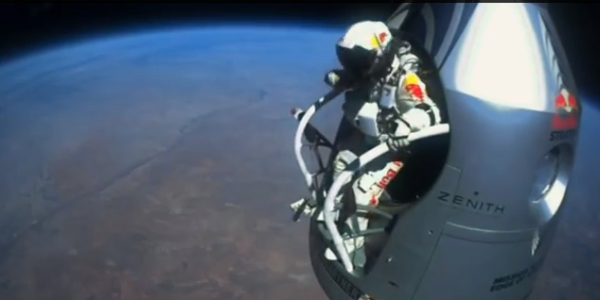
Austrian daredevil Felix Baumgartner broke a number of records with his breathtaking edge-of-space skydive yesterday -- and not just the highest jump from a platform (128,100 feet), the longest distance free-fall, (119,846 feet) and becoming the first skydiver to break the sound barrier (with a maximum vertical velocity of 833.9 mph or Mach 1.24). He was also responsible for notching up the most simultaneous live views on YouTube to date.
According to Google, over eight million people (myself included) visited the live stream to watch Baumgartner jump from a capsule attached to a giant helium balloon some 24 miles (39km) above the Earth and land safely around nine minutes later, nonchalantly touching down almost -- as a friend described it -- as if stepping off a bus.
Celebrating his achievements, Google says in a blog post: "We congratulate Felix Baumgartner and the entire Red Bull Stratos team for their successful mission, and for creating a live stream with the most concurrent views ever on YouTube."
If you missed the Red Bull Stratos stunt live you can watch highlights from the mission and other videos relating to it on the official YouTube channel.
-

Microsoft announces Xbox Music
Publié: octobre 15, 2012, 3:39pm CEST par Wayne Williams
Whether you think Microsoft wants to be Apple, or not, the company continues to roll out products designed to compete with its major rival. Today’s announcement is for Xbox Music, a digital music service for the Xbox games console, which will also appear as the default music player in Windows 8.
The service, which goes live tomorrow and will be available in 22 countries from launch, is a cross between Spotify and iTunes. Users will be able to listen to songs or full albums for free, create artist-based streaming radio stations, and put together music mixes and playlists. The iTunes element comes in the form of a music store, which will allow users to purchase and download tracks. The store will reportedly offer over 30 million songs, some four million more than Apple's store. There will also be over 70,000 music videos on offer.
Talking about the new service, Yusuf Mehdi, corporate vice president of Microsoft’s Interactive Entertainment Business Marketing and Strategy, says: "There are a lot of individual services that do a good job, but today there isn’t a service which can pull together the benefits of download-to-own, music subscription, or free streaming services. With Xbox Music, what we wanted to do is bring all of that value in one simple, easy-to-use service, then build some additional value on top -- make it really beautiful, and have it work across all of your devices. We’ve been able to simplify the music experience in a really powerful way".
Xbox Music will be available in two flavors -- free, but ad supported, or as an unlimited subscription-based service priced at $9.99 a month. Although it will only be available on Xbox initially, the service will expand to PCs and tablets running Windows 8 when the new OS launches on 26 Oct, and arrive on Windows Phone 8 shortly afterwards. There are also plans to release Android and iOS apps at a later date.
Personally, I'm pretty excited about the new service -- what about you?
-

Saudi Arabia calls for new international body to censor the Internet
Publié: octobre 12, 2012, 4:06pm CEST par Wayne Williams
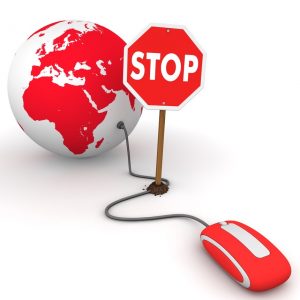 You’ll no doubt be familiar with The Innocence of Muslims, the controversial film that has angered Muslims across the Middle East, sparking riots and leading to several deaths.
You’ll no doubt be familiar with The Innocence of Muslims, the controversial film that has angered Muslims across the Middle East, sparking riots and leading to several deaths. It’s unlikely you’ll have actually watched it, although the more curious among you may have caught some of it on YouTube, where the film is still freely available -- provided, of course, you’re not reading this in one of the countries where Google has blocked it, specifically Libya, Egypt, India, Indonesia, and Malaysia. Russia recently banned the film, too, which unsurprisingly also is not available to watch in Iran, Pakistan, or Afghanistan, where they’ve chosen to go a step further and block YouTube entirely.
The truth is, pretty much every one of the Muslims up in arms about the film won’t have watched it either (I’ve foolishly sat through the full 74-minute version, by the way, and it’s an atrocious piece of film making), because the movie doesn't so much anger them, as the idea of it. The Quran and other Islamic teachings state expressly that Muhammad is not to be depicted in any way, and The Innocence of Muslims not only has an actor playing him, but shows the prophet as a fool, a fraud, insane, and a sexual deviant. You can understand why Muslims would be rather upset about it all.
Despite mounting pressure, including from the White House itself, Google refused to pull the film because it doesn't violate policies. Robert X. Cringely gave his view on the situation here, but the simple truth is Google is trapped between a rock and a hard place. If YouTube had censored The Innocence of Muslims, given in to the pressure, that would have left the company vulnerable to the "heckler’s veto", leading potentially to a wide range of other content being pulled from the site. What’s harmless to one person, might be highly offensive to another and it’s all very subjective.
Inevitably, Google’s stance didn’t go down at all well it certain countries and according to the Telegraph, the Saudi government recently made a submission to the World Telecommunications Policy Forum, a UN body hosting forthcoming international talks on internet governance, calling for the creation of a new overseer designed to censor offensive content on the Internet.
The submission reportedly states that the incident is "an obvious example" of the need for greater international cooperation to restrict this type of content, and that "any reasonable person would know that this film would foment violence and, indeed, many innocent persons have died and been injured with this film as a root cause".
The submission goes on to add: "This behavior, along with other malicious and criminal activities such as child pornography, identity theft, spam, denial of service attacks, and malware aimed at destroying or crippling businesses, inter alia, must be addressed by states in a collaborative and cooperative environment and strongly underscores the need for enhanced cooperation".
What’s your view on the Saudi government’s submission? Is it a fair and sensible one, or another example of a restrictive nation trying to undermine liberal Western values and freedom of speech on the internet? As always, leave your comments below.
Photo Credit: Matthias Pahl/Shutterstock
-

Microsoft wants to become Apple, but can't
Publié: octobre 10, 2012, 10:22pm CEST par Wayne Williams

Microsoft has a long history of copying Apple. Back in the early 90s, Bill Gates' company introduced features found in the Macintosh GUI into Windows 2.0, sparking a copyright infringement lawsuit (Apple's taste for litigation is nothing new). Microsoft arguably has pilfered ideas from its rival's OS ever since -- Windows’ taskbar and Aero Peek certainly share clear similarities with OS X's Dock and Exposé. When the iPod became a massive hit, Microsoft introduced the Zune. Apple stores are hugely popular, which is why we’re now seeing Microsoft Stores popping up everywhere. Surface, in a way, copies the iPad, although of course Microsoft has tried (and failed) to popularize tablets since 2002.
And yes, before I go too far into this article, I’m aware the above paragraph could be seen as troll bait, so I’ll point out that Microsoft copies from other companies too -- Google being a major example -- and Apple, in turn, has lifted ideas from Microsoft, particularly from its operating system. Big companies copy from one another, it’s a fact of life. My point, however, is when Apple does something exceptionally well, Microsoft is keen to try and follow suit.
Windows 8 is Microsoft’s attempt to break into the post-PC market, and while it’s a clear gamble, it’s also a necessary one. But in going down this route, the company has to change what it is and how it operates. Microsoft has to become more like Apple. CEO Steve Ballmer released the annual shareholder letter yesterday, which my colleague Joe Wilcox reported on here, and in it he describes Microsoft as transforming into a "devices and services company", meaning its focus will be on end-to-end hardware, software and services products -- like Apple.
This is, as Ballmer says, a "significant shift" for Microsoft. The Windows Store, the firm’s digital distribution platform, is designed to ape Apple’s iTunes Store, giving the company a new revenue stream -- an approach that could, potentially, subsidize future versions of Windows.
In taking this new direction, Microsoft will doubtless also have to change how it rolls out OS updates. Windows RT is the company’s tablet operating system, and while Microsoft could just release a new version every three or four years, as has been its strategy previously with the desktop version, I think we’re likely to see much more regular refreshes as we do with Apple iOS and Google Android.
RT is so close to Windows 8 that any changes made to the tablet OS will need to be carried over into the desktop version too. That Microsoft has already released a cumulative update for Windows 8, instead of dropping a service pack on us a few months down the line, shows this more rapid release schedule is already in effect.
See Joe Wilcox's rebuttal: "Microsoft isn't trying to be Apple"
But getting back to the point; the problem I have with this new direction for Microsoft is in transforming itself into an Apple clone, the company risks losing its identity. The Windows Store isn't iTunes, it’s Google Play but with less choice. Surface is the iPad, with less mainstream appeal. Windows Phone 8 is a less popular alternative to the iPhone and all those Android handsets. Microsoft Stores are horrible Apple Store knock-offs.
Microsoft wants to make money, it wants to be relevant and popular, but in trying to reinvent itself and catch up to rivals, it seems to have lost all sense of what it is. Microsoft can’t be Apple, and it can’t be bigger and better than Apple by stealing from its rival’s playbook.
Apple cofounder Steve Jobs said of the company in Triumph of the Nerds: "The only problem with Microsoft is they just have no taste. They have absolutely no taste. And I don't mean that in a small way, I mean that in a big way, in the sense that they don't think of original ideas, and they don't bring much culture into their products."
Although that quote comes from 1996, it seems even more relevant today.
Photo Credit: YuanDen/Shutterstock
-

Microsoft releases cumulative update for Windows 8
Publié: octobre 10, 2012, 3:08pm CEST par Wayne Williams
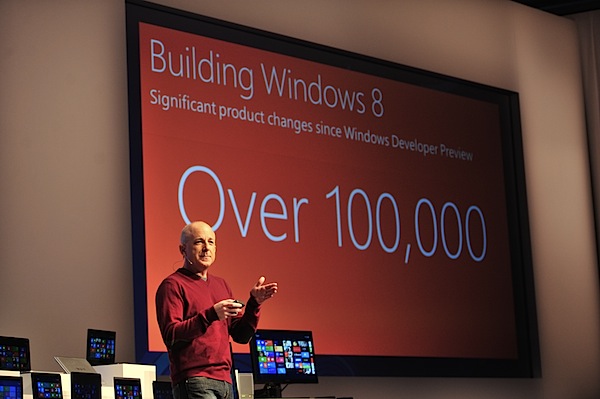
With the newest incarnation of Windows fast approaching, Microsoft has released a 102MB cumulative update for the "gold", or final, versions of Windows 8 and Windows Server 2012, designed to make the new operating system ready for general availability. According to Steven Sinofsky’s Building Windows 8 blog post, the update improves the OS’s "performance, power management and battery efficiency, media playback, and compatibility."
You can install the 'Update for Windows 8' through the control panel and see exactly what’s been addressed in the accompanying Knowledge Base article.
The list of improvements is as follows:
- Increased power efficiency to extend battery life
- Performance improvements in Windows 8 applications and Start screen
- Improved audio and video playback in many scenarios
- Improved application and driver compatibility with Windows 8
According to Sinofsky, "During the final months of Windows 8, we challenged ourselves to create the tools and processes to be able to deliver these “post-RTM” updates sooner than a service pack. By developing better test automation and test coverage tools we are happy to say that Windows 8 will be totally up to date for all customers starting at general availability. If you are an MSDN or enterprise customer, these updates will be available for your Windows 8 PCs via Windows Update as of today (October 9), following our standard cadence for Windows Updates on the second Tuesday of each month at about 10:00am".
-

Get 21GB of space on MegaCloud for free [BetaNews Exclusive Offer]
Publié: octobre 9, 2012, 5:01pm CEST par Wayne Williams
MegaCloud is a new, free-to-use cloud storage and backup service (compatible with Windows, Mac, Linux, and Mobile) that lets you store, sync and share all your documents, photos, music, videos and more across all of your devices. Unlike some similar services, having a free account doesn’t mean being restricted in any way -- all free users get 16GB of space, divided into 8GB for storage and 8GB for backups.
Well, that’s how much ordinary, everyday free users get. But obviously, as a BetaNews reader you deserve a little extra, so MegaCloud has kindly upped the free storage on offer to 21GB (13GB for storage, plus 8GB for backups) exclusively for us, and all you need to do is click on the link below and sign up for a free account. And if that’s still not enough free space for you, you can get yet more gratis storage simply by installing a mobile app or referring friends to the service.
MegaCloud might be the new kid on the block, but it offers lots of impressive features. You can use it to:
- Share photos, videos and more across Twitter and Facebook in a single click.
- Access and manage your files on the go with MegaCloud for Mobile (supports all iOS and Android devices).
- Create Shareable links with a passcode to securely share your files with friends.
- Revisit and restore earlier versions of your files.
- Browse, edit, view and even delete your files online (including audio and video).
- Review and retrieve deleted files.
- Effortlessly protect your social media and email data with Social Media Backup.
- Discuss individual files with others whom you’ve granted access to.
Its fully-featured backup service lets you choose exactly what you want to copy over, as well as creating schedules for automatic and regular backups of your hard drive. All backups created with MegaCloud can be restored at the click of a button which makes the process of moving your data from one PC to another a simple and very convenient endeavor.
To sign up just click here. You will need to use that link and install the software to get your 5GB bonus.
-

Street View arrives in Google's mobile app -- iOS 6 users rejoice
Publié: octobre 4, 2012, 4:15pm CEST par Wayne Williams
Google has introduced Street View into its web app, bringing back one of the most sorely missed features lost when Apple swapped Google’s popular mapping app for its own much poorer solution in iOS 6. I’m sure you’re more than familiar with the whole sorry tale that led Apple CEO Tim Cook to issue an apology, and our own readers saying they wouldn’t be buying an iPhone 5 because of it, so I won’t dwell on the subject here.
If you followed my advice and added a shortcut to Google’s web app, you’re all set to start using Street View. Its rollout seems to be complete, so you should now have access to it, wherever you happen to live.
It’s very easy to use, just load the web app (if you don’t have a shortcut installed go to maps.google.com in Safari), tap to zoom in to a location, and a bar should appear at the bottom of the screen, showing the familiar Pegman. Click on him, and Street View will open in a new tab. You can also go directly to maps.gstatic.com.
In my experience, it works perfectly -- great on the iPad and presumably just as well as on the iPhone 5 -- and you can navigate the streets by dragging on the screen, or tapping the arrows. Street View can be displayed portrait or landscape.
Like a lot of people I’m still keen for Google to roll out its new, official Maps app, but this will certainly do for now.
-

Facebook reaches 1 billion monthly active users
Publié: octobre 4, 2012, 2:34pm CEST par Wayne Williams
 You know what’s cooler than 500 million Facebook users? One billion. That’s the number of people Facebook says are now using the social network every month. It reached that magical milestone on September 14 at 12:45 PM Pacific time, so it’s probably one billion and a bit, by now.
You know what’s cooler than 500 million Facebook users? One billion. That’s the number of people Facebook says are now using the social network every month. It reached that magical milestone on September 14 at 12:45 PM Pacific time, so it’s probably one billion and a bit, by now.To celebrate, Mark Zuckerberg posted a little thank you and a fact sheet about the news, which contains some interesting key metrics, including that there have so far been 140.3 billion friend connections, and over 1.13 trillion likes since that feature launched in February 2009. There are 219 billion photos currently on the site, not including deleted ones, which Facebook says totals around 46 billion.
There have also been 17 billion location-tagged posts, including check-ins, since August 2010 when that feature was added, and 62.6 million songs have been played 22 billion times since September 2011 when the first music-listening applications were launched. As Facebook points out, that equates to around 210,000 years of music.
It also provides a breakdown of the average user signing up now, when Facebook hit 500 million users (July 2010), 100 million users (August 2008), 50 million users (October 2007) and 25 million users (January 2006). The details include the median age of the user, the top countries people are connecting from, and the average number of friends each user has. It also points out that Facebook now has 600 million users accessing the site via mobile devices.
Obviously reaching the one billion figure is big news for Facebook, and a much needed positive message for the company in the light of those tumbling share value reports, but there are still markets where it has a lot of work to do -- China and Russia being the main two examples where Facebook is a minnow compared to much more popular home-spun social networks.
Photo Credit: LeventeGyori/Shutterstock
-

iPhone 5 now available in solid gold
Publié: octobre 3, 2012, 6:14pm CEST par Wayne Williams
The way some people covet the new iPhone 5 you’d think it was made out of solid gold rather than glass and aluminum. Of course if it was available in that precious metal you’d have to pay quite a bit more than $399 for a 64GB model. Somewhere in the region of $35,411, in fact.
If you’re wondering how I arrived at that figure, the answer is that’s how much British designer Stuart sells his limited edition 18ct gold iPhone 5s for. Yes, that’s right -- targeting the "more money than sense" market, Stuart has decided to create a new solid gold chassis for the phone, hand-finishing it, and adding an apple logo made out of 53 diamonds (amounting to 1ct) for good measure.
If that seems a bit pricey, you probably haven’t shopped with Stuart Hughes before. His iPhone 4S Elite Gold handset retails for (hold on to your wallets) just under $10 million, and his solid Gold iPad SUPREME Edition is a bargain at just $210,000 (apps not included).
The one downside of making a phone out of 18ct gold is you end up with a device that’s even more of a scratch and dent magnet than the standard aluminum case, which is saying something. But if you’re the sort of person who thinks $35,411 is a fair price to pay for a phone, you’re probably not going to be too worried about such a trifling detail.
-

Skype offers free WiFi across the UK
Publié: octobre 3, 2012, 4:03pm CEST par Wayne Williams

If you live in the United Kingdom or the Republic of Ireland, you’ll soon be able to access free WiFi through cafés, restaurants, hotels and shops, courtesy of Skype and wireless provider Wicoms.
The new WiFi network initiative, called Free Skype WiFi, will be available to all Skype users and accessed using the free Skype WiFi app. This already allows users to connect to over a million hotspots around the world, but for a fee. Users who don’t currently have a Skype account will be able to sign up on the spot by entering their email address.
The aim of the service is to allow high-street businesses to compete with online retailers by providing ways for them to interact with potential customers. According to a recent YouGov survey conducted by Wicoms, over 50 percent of 18-34 year olds would be more likely to buy something from a store there and then if they received a discount or voucher on their phone when they entered the premises.
The Free Skype WiFi service is available to any interested businesses and venues for £11.98 a month (including VAT), and they’ll also need to purchase a router for £58.80. However, both are being offered for free -- on a trial basis -- throughout October.
Shadi Mahassel, Program Manager for Skype Access says of the new initiative: "Simplicity is at the heart of everything Skype does. We believe that internet access should be available to everyone in a simple and affordable way. Our partnership with Wicoms enhances our ability to make Skype universally accessible and expands on our WiFi strategy, which today provides paid WiFi access at over one million locations worldwide".
Photo Credit: Samot/Shutterstock
-

LinkedIn identifies the top-10 endangered office tools and trends
Publié: septembre 28, 2012, 1:39am CEST par Wayne Williams
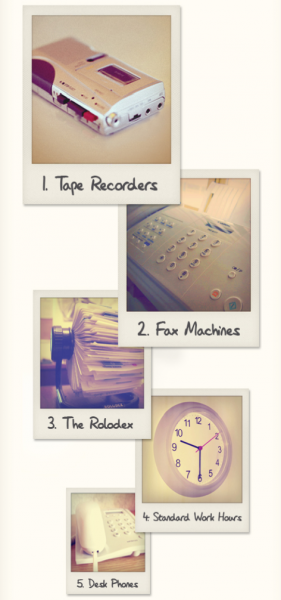 The office workplace is continually evolving. New technologies and trends -- like cloud computing and BYOD schemes -- are becoming more and more popular, but not every firm is willing to embrace the future, and many are stuck firmly in the past.
The office workplace is continually evolving. New technologies and trends -- like cloud computing and BYOD schemes -- are becoming more and more popular, but not every firm is willing to embrace the future, and many are stuck firmly in the past.LinkedIn, the world’s largest social network for professionals, surveyed more than 7,000 members across the globe and asked them which of the current office tools and trends they expect to be extinct in five years’ time, combining the answers to produce the following top 10:
- Tape recorders (79 percent)
- Fax machines (71 percent)
- The Rolodex (58 percent)
- Standard working hours (57 percent)
- Desk phones (35 percent)
- Desktop computers (34 percent)
- Formal business attire like suits, ties, pantyhose, etc. (27 percent)
- The corner office for managers/executives (21 percent)
- Cubicles (19 percent)
- USB thumb drives (17 percent)
While some of the responses, like tape recorders and fax machines, are on fairly safe ground, there are some rather more wishful answers in the list. It would be nice to think by 2017 all businesses will have outlawed cubicles and neck nooses, but somehow I’m not convinced.
The survey also looked at up-and-coming trends that professionals expect to become much more popular in the future. The list included tablets (55 percent), cloud storage (54 percent) and flexible working hours and smartphones (tied at 52 percent). More fanciful responses included having a clone or assistant (25 percent), office areas lit by natural sunlight (25 percent), somewhere to take a nap (22 percent) and a mute button for silencing co-workers (19 percent).
There's a nice infographic summing it all up here.
What trends and tools would you like to see phased out over the next five years? And similarly, what new business practices do you think should be adopted in their place? Leave your comments below.
-

10 issues that erode cloud confidence
Publié: septembre 27, 2012, 6:36pm CEST par Wayne Williams

Cloud computing is finally beginning to mature to the point where it’s an attractive proposition for an increasing number of enterprises and small businesses, but even so many firms are still very hesitant to make the move online.
A new study jointly undertaken in the second quarter of 2012 by the Cloud Security Alliance (CSA) and ISACA identifies 10 key concerns perceived to limit acceptance and reduce the benefits of cloud computing. The Cloud Market Maturity study, which can be read in full here, surveyed more than 250 cloud users, providers, consultants and integrators from nearly 50 countries, and highlightes the following points as being the areas where confidence is weakest:
- Government regulations keeping pace with the market
- Exit strategies
- International data privacy
- Legal issues
- Contract lock in
- Data ownership and custodian responsibilities
- Longevity of suppliers
- Integration of cloud with internal systems
- Credibility of suppliers
- Testing and assurance
Talking about the results, Greg Grocholski, international president of ISACA says:
One of the most interesting findings is that governance issues recur repeatedly on the list of the top 10 concerns. Cloud users recognize the value of this model, but are wrestling with such questions as data ownership, legal issues, contract lock-in, international data privacy and government regulations. As cloud services continue to evolve, it is critical that we work together as an industry to provide insights and recommendations on these issues so that service and solution providers can look to innovate and deliver what the cloud services market needs to advance and what enterprises need to succeed.
The study also reveals that business enablers rank higher than financial considerations when making decisions about the cloud, while reducing the environmental footprint of the organization ranks lowest.
Twenty-four percent of respondents also bemoan the perceived lack of innovation in the cloud, while the majority of those surveyed feel that cloud computing is still some way from reaching actual maturity.
Infrastructure and platform services are considered to be in the middle-to-upper level of infancy, with respondents estimating it will take three years to make it into growth.
Software as a service (SaaS) is viewed slightly more favorably, but still seen as being a good two years away from the same point.
If you want to know more about the study’s findings and implications, ISACA and CSA will be host a webinar on October 11, and you can register your interest here.
Photo Credit: Lightspring/Shutterstock
-

Get Google Maps back in iOS 6
Publié: septembre 27, 2012, 4:34pm CEST par Wayne Williams
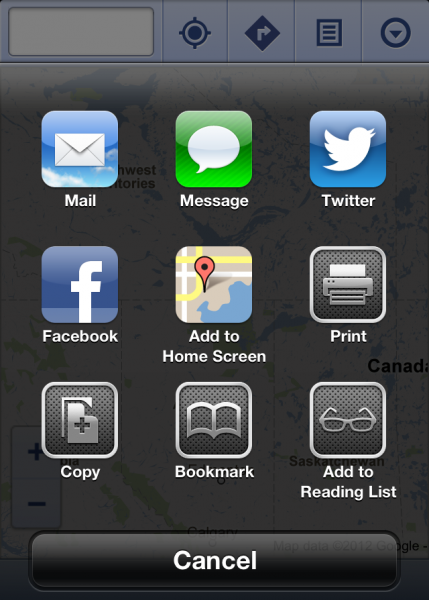
Although there are downsides to the latest version of iOS 6, it’s mostly a welcome improvement, with of course the notable exception of the new maps feature that is a poor substitute for the Google app it replaced.
If you’re unhappy with the poor-quality cartography, incorrect place names and dodgy and potentially dangerous driving directions that seem to be the app’s stock-in-trade, don’t worry -- there’s a quick fix available that should tide you over until Google releases its sorely needed-new Maps application.
Just open up Safari and navigate to maps.google.com. A small window will appear, telling you how to install the web app on your device. Just tap the arrow at the bottom of the page and select the Add to Home Screen icon. Give the icon a name, or select the default choice ("Google Maps") and hit return. You can then drag the icon to your front screen, and launch the app whenever you need decent, reliable directions and trustworthy mapping.
While not an ideal solution, it’s certainly an improvement over the new built-in maps app.
-

New wearable camera chooses when to take photos for you
Publié: septembre 25, 2012, 7:28pm CEST par Wayne Williams
Modern cameras come with all sorts of useful features to help ensure you get the best shots. They can identify faces, detect smiles and even blinks. OMG’s new Autographer camera goes a step further by actually doing away with the need for a human photographer, deciding for itself when to start snapping.
Described as the world’s first intelligent, wearable camera, that enables users to "see the unseen", the Autographer employs five in-built sensors (light, color, motion, direction and temperature) and Microsoft ‘SenseCam’ technology to choose the best moments to take a picture. All you have to do is wear the camera and make sure the wide-angle lens is facing forward at all times.
The Autographer will capture a stream of high resolution photos (up to 2,000 in a single day) that you can then review at your leisure. There’s also a stop-frame video option which will string all of the pictures together so you can watch them in sequence -- great for life bloggers or for recording parties or concerts.
Desktop software and a mobile app will let you share and edit your images and create videos or animated stories. The Autographer also offers Bluetooth connectivity for easy downloading of images on the move.
The camera will initially be available to purchase online in the United Kingdom, starting in November, priced at £399 ($650). If it sells well, OMG said it will look at bringing the product to the US and Japan at a later date.
-

New Myspace: gorgeous, but who will use it?
Publié: septembre 25, 2012, 3:48pm CEST par Wayne Williams
Let's be honest, the news that Myspace is being revamped probably doesn’t have you jumping for joy and punching the air. In fact, I expect your response is probably similar to mine -- a little bit of interest mixed with a lot of "so what?" Myspace was the number one social network in the days before Facebook and Twitter, but now it’s a faded and largely forgotten web presence used by people who should have let go and moved on a long time ago.
But before you dismiss the revamp entirely, as I nearly did, it’s at least worth watching the teaser video Myspace just released because, as it turns out, the completely rebuilt service is beautiful, glossy and -- rather surprisingly -- it might just have you wanting to try it out. I know. Using Myspace! What's next, lobbying Yahoo to bring back GeoCities?
The new site, which still focuses on the media side of things, clearly borrows design ideas from other social networks, most notably Pinterest, and that’s no bad thing. The video shows using the service to be a slick and intuitive experience, but we’ll have to wait until it launches to find out for ourselves. There’s no word on when that will be just yet, but it’s likely to be this side of Christmas.
The god-awful My____ logo is gone, replaced by a simple, modern (and Microsoft-styled) design, and while the site aims to appeal to content creators like musicians, filmmakers, photographers and designers, it also targets their followers with features like "This week’s Top Fans" map which plots follower locations and includes stats like gender percentages and average age.
How well the new Myspace does will really depend on whether it can draw enough big-name celebrities away from Twitter, Facebook and Google+ and persuade them to offer something that fans can’t get elsewhere. The fact that Justin "Sean Parker" Timberlake is a big investor could help here.
Ultimately, as lovely and as slick as it might turn out to be, Myspace has a big problem and it’s an obvious one. Most people already have enough social networks consuming their time. As Google+ shows, you can offer users everything they could possibly want, and it still might not be enough to draw them in.
Of course time will tell. What do you think? Are you pumped for the return of Myspace or do you think JT and co. are just flogging a dead horse. Let me know in the comments below.
Oh, and if you were wondering, the rather nice song that plays in the background of the Myspace video is Heartbeat by JJAMZ.
-

Bitrix24 gives away free cloud-based social intranet to startups
Publié: septembre 24, 2012, 7:35pm CEST par Wayne Williams

As Microsoft’s recent $1.2 billion Yammer acquisition proves, there’s a growing demand for enterprise social networks at the moment. Big name firms like Citrix and SalesForce have invested heavily in the popular communications trend, and Bitrix24 has seen some 10,000 SMBs sign up to use its cloud-based service since the May launch -- helped in no small part by the fact it’s entirely free for companies with 12 or fewer users.
Buoyed by its growing user base, Bitrix24 now targets startups with a $2.4 million program designed to popularize social intranet use at firms that might consider it out of their reach for one reason or another. The company plans to do this by giving away a thousand one-year subscriptions to its flagship Professional Intranet plan (worth $2,400 each) and all companies need do to be considered for one of these grants is to fill out the short application form on the company’s website.
Firms don’t need to apply for the grants themselves either. As Dmitry Valyanov, President of Bitrix24, explains: "We are inviting incubators, venture funds, startup blogs, local meetups and angel communities to participate in our initiative. We’ll gladly provide such organizations with grants that you can distribute among the startups you know. We also anticipate a similar program for small businesses to be announced later this year".
The free version of the cloud-based intranet service gives small businesses 5GB of online storage space and offers essential tools like CRM, project management, document sharing, employee time tracking, work reports, instant messaging, task tracking, search, workgroups, and client collaboration.
Photo Credit: T. L. Furrer/Shutterstock
-

Apple voted the coolest brand in UK
Publié: septembre 24, 2012, 5:01pm CEST par Wayne Williams
 I spent a long time chatting with prospective iPhone 5 purchasers at my local Apple store at the weekend. I wasn’t queuing up with them, just getting feedback on why they were so keen to buy a handset that isn’t, frankly, the most amazing or revolutionary device Apple has ever produced. The reasons I received ranged from: "I’m out of contract and need a new phone" to "I buy everything Apple makes".
I spent a long time chatting with prospective iPhone 5 purchasers at my local Apple store at the weekend. I wasn’t queuing up with them, just getting feedback on why they were so keen to buy a handset that isn’t, frankly, the most amazing or revolutionary device Apple has ever produced. The reasons I received ranged from: "I’m out of contract and need a new phone" to "I buy everything Apple makes".I also got a lot of the "iPhone is the coolest phone", responses. Even when Apple messes up, people still love the company. Its phones may no longer be the fastest or arguably the best, but they still have a magical "cool" quality about them, as does Apple itself.
It should, therefore, come as no surprise to hear that Apple took the top spot in this year's annual CoolBrands survey -- which, as its name suggests, seeks to identify the coolest brands in the UK -- beating the likes of YouTube (which came 2nd), Aston Martin (3rd) and Bang & Olufsen (9th).
Interestingly, there were two ice cream makers in the top 20 -- Haagen-Dazs (13th) and Ben & Jerry's (15th) -- which suggests some people may have taken the ‘cool’ part of the ‘what’s the coolest brand’ question rather too literally.
To get the results CoolBrands surveyed 3,000 consumers and a panel of 39 experts and asked them to rank a shortlist of 1,200 brands from more than 10,000 initially considered. The full top twenty is as follows.
- Apple
- YouTube
- Aston Martin
- BBC iPlayer
- Glastonbury
- Virgin Atlantic
- Bang & Olufsen
- Liberty
- Sony
- Bose
- Haagen-Dazs
- Selfridges
- Ben & Jerry's
- Mercedes-Benz
- Vogue
- Skype
- Nike
- Nikon
Speaking about the survey, and the absence this year of brands like Ferrari, Maserati and Chanel, Stephen Cheliotis, chairman of the CoolBrands expert council, says: "It is interesting that in this age of austerity our perception of cool has increasingly shifted from aspirational, luxury brands to free or more affordable brands that provide us with pleasure".
As an interesting side note, it's worth pointing out that while Twitter and Google both made the top five, Facebook is nowhere to be seen in the list.
Photo Credit: BMCL/Shutterstock
-

Six things that bug me about iOS 6
Publié: septembre 21, 2012, 9:24pm CEST par Wayne Williams
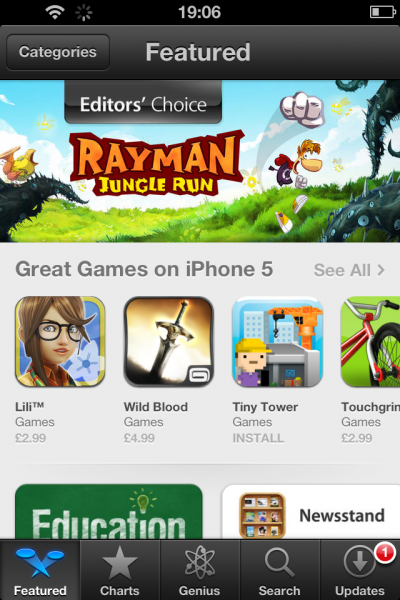 If you have a newish iOS device -- whether it’s iPhone, iPad or iPod touch -- there’s a good chance you have already upgraded to iOS 6 and are using it now. According to a study by Chitika some 15 percent of users with a compatible device upgraded in the first 24 hours, and that figure will likely have at least doubled by now, a couple of days later.
If you have a newish iOS device -- whether it’s iPhone, iPad or iPod touch -- there’s a good chance you have already upgraded to iOS 6 and are using it now. According to a study by Chitika some 15 percent of users with a compatible device upgraded in the first 24 hours, and that figure will likely have at least doubled by now, a couple of days later.Apple says iOS 6 has 200 new features, and while some of them are very useful inclusions, such as Facebook integration throughout, and Shared Photo Streams, iOS 6 isn’t the dream operating system it could have been. In fact, it’s hard to imagine Steve Jobs would ever have allowed it to have been released if he were alive today. Here, in no particular order, are the areas where I feel Apple could have tried harder. Yes, based on my real-world experience, and regretful iOS 6 upgrade.
1. Maps. Surely you know all about the problems with maps by now (if you don’t check out my review). Apple says it will work hard to fix the issues and improve the quality of maps. I’m sure that's going to take time and money, and even then it’s unlikely to be anything better than the Google Maps that Apple's home-grown replaces. Fortunately Google is working on a new app that should hopefully be available by Christmas.
2. App Store design. I was more than happy with the way the old App Store interface looked and worked but now Apple has updated it and to be honest, I’m not a fan. The strip at the bottom, with Featured, Charts and Search occasionally changes to the old version for no obvious reason, and hitting Genius loads a blank page and crashes the app every time (obviously this could just be a problem with my particular device and setup). Browsing apps, and discovering ones that have just been released in a particular category, is either awkward or apparently not possible. I’m sure I’ll get used to the new design and interface, but I can’t imagine ever liking it.
3. Passbook. In time Passbook, which gives you a place to store plane and cinema tickets, discount vouchers and so on, could become really useful. At the moment it’s a little buggy. Some people have reported problems connecting to the iTunes Store to access the apps (changing the current month to November apparently fixes the issue). Worse than that, currently the only apps available (to me at least) are United Airlines and Lufthansa. It will get better in time, but so far it’s pretty useless.
4. No YouTube app. You can download a new version of the YouTube app, but it seems a shame that Apple has decided to remove this, and Google Maps, as default options. Google's new app is arguably better, but it does have adverts now.
5. Endless upgrade. Depending on what device you’re updating, you could well be in line for a 3 hour+ upgrade that will chew through your battery life. Plug your device into a charger and leave it overnight, and hopefully the upgrade should be complete in the morning. I know it’s a fairly major upgrade, but even so it’s ridiculously slow to complete.
6. Missing features. I get that Apple wants to force people to upgrade their hardware on a regular basis -- that’s how the company makes money after all. But it just seems ridiculously mean to prevent features like Siri and Panorama from being used on the iPhone 4, iPad 2 and iPod touch (4G). The devices are certainly capable of handling those functions.
If you've upgraded, what's been your experience so far? And, to give a little balance here, what are your favourite/least favourite features?
-

5 reasons why Microsoft Surface will struggle
Publié: septembre 21, 2012, 5:05pm CEST par Wayne Williams
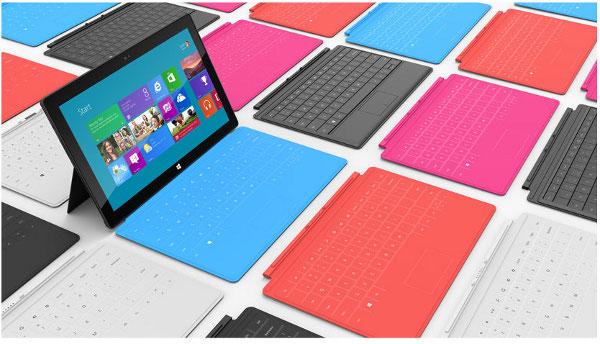
What? You're looking for iPhone 5 stories, since it launches today. I want to break with the pack, and write about something else. Shocking, isn't it? Windows tablets is worthy topic.
While you can expect many different Windows 8 or RT tablets next month, Microsoft's own Surface is the trailblazer. I've got some concerns, which apply to other tabs running the new OS -- five big barriers I think Surface will face at launch.
1. Performance. Surface is a decent post-PC device that comes in two flavors. You can buy the lesser-specced Windows RT version, or the more powerful Windows 8 Pro-powered device. Choose the latter, and you’ll be able to run much of the software you’d want to use on it. However, you can do the same with a cheaper laptop. Anyone who needs real power from a PC -- for intensive tasks like video editing or 3D graphics rendering -- is unlikely to want to compromise on a device that simply isn’t as good. If you’re someone who regularly pushes your PC to the limit, you're going to end up frustrated. As colleague Mihaita Bamburic observes, you can't do real work on a tablet.
2. Price. Shortly after Microsoft announced its two Windows 8 tablets, I wrote an article stating that Surface pricing dilemma is two opportunities waiting to be missed. In the piece I said pricing could go one of two ways -- very cheap, to make a big impact in the market, or moderately expensive, to make it clear to purchasers that it’s not simply another cut-price iPad alternative. Since that article was written, the market has been flooded with cheap Android tablets, so a $200 Surface running Windows RT would no longer be viewed as quite as special. But even so, if, as Steve Ballmer recently hinted, Surface (and other Windows 8 tablets) are going to be priced to compete with iPads - with RT at the lower end, naturally, Microsoft is going to have its work cut out to persuade people to spend that much, as our poll shows.
3. Perception. With Surface, Microsoft has created its very own special brand of confusion. When you go into the shop to buy a Surface tablet (and yes, let’s pretend people only ever buy electrical devices from shops), you’ll be faced with two choices: A tablet running Windows RT and a tablet running Windows 8 Pro. That's nice and baffling for the average consumer who probably won’t know what the hell Windows RT is. I expect the conversation will go something like this:
"Hello, Mr. Shopkeeper. I want to buy a Microsoft Surface tablet".
"Sure, no problem. This one running Windows RT, or this one running Windows 8 Pro?"
"What’s the difference?"
"Well, with RT you can’t run existing applications, you have to buy your programs through Microsoft’s store".
"Like the iPad, where you buy your apps from Apple?"
"Yes. But without the choice".
"But I can run my programs on Windows 8 Pro?"
"Yes. Although you’d be better off buying this laptop and an Android tablet, as it will work out cheaper".
"You’re trying to save me money? What kind of fictional shopkeeper are you?"
4. Design. Microsoft Surface looks quite nice. But the device is chunkier, heavier and lacks the aesthetics of the new iPad. It just doesn’t seem as appealing. It looks like someone has ripped the screen off a laptop and bolted a cheap plastic keyboard to the front.
5. Limited appeal. The Windows RT version of Surface is, in my opinion at least, going to fail badly. It’s essentially another tablet where you buy your apps through it, like the iPad, Google Nexus or Kindle Fire, but as our fictional shopkeeper pointed out, it lacks backward compatibility with existing PCs, and will have a very limited number of third-party apps at launch.
The Windows 8 Pro edition could find a home in the business world, but price will be a factor here. That users will be able to run their existing applications on it will be a big plus of course, although you can do that (sort of) with pretty much any tablet using a program such as GotoMyPC.
-

Apple iOS 6 Maps -- headed in the wrong direction [review]
Publié: septembre 20, 2012, 8:06pm CEST par Wayne Williams
 I upgraded one of my Apple devices to iOS6 last night and the first thing I did, once finished setting it up, was to launch the new Maps component. This, as you’ll no doubt be aware, replaces the aging Google Maps app. I knew from other articles I’d read previously that Apple’s own mapping service wasn’t going to be as good as the old Google one. After all, Apple is new to this mapping lark, and the search giant has years of experience in the field. But I was prepared to give it the benefit of the doubt, and forgive any minor problems. After all, how bad could it be?
I upgraded one of my Apple devices to iOS6 last night and the first thing I did, once finished setting it up, was to launch the new Maps component. This, as you’ll no doubt be aware, replaces the aging Google Maps app. I knew from other articles I’d read previously that Apple’s own mapping service wasn’t going to be as good as the old Google one. After all, Apple is new to this mapping lark, and the search giant has years of experience in the field. But I was prepared to give it the benefit of the doubt, and forgive any minor problems. After all, how bad could it be?I started, as I am sure most people do, by typing in my address. Well, actually as I live in the United Kingdom I typed in my post code. Apple found my road, Prince’s Drive, but decided it was called Princess Drive. Not the most auspicious of starts.
Since my wife suggested it might be nice for us to take a drive to the seaside town of Blackpool to see the famous Illuminations later in the year, I decided to get the route for there. Apple Maps offers a new turn-by-turn direction system that guides you along the route. This is quite nice, with each step shown in a box at the top of the screen (including the distance to travel and the action to take) and where you currently are displayed on the map below. I cheerfully drove along the virtual route, thinking "Hey, this is all pretty well done, I like this", when I noticed something odd. Blackpool is on the northwest coast of England. Apple Maps directed me to the South -- a four-and-a-half hour, 248-mile, detour in the wrong direction.
I explored the map further and found other errors. Incorrectly named places and cities in the wrong location. Not just in the United Kingdom, but around the world. I then spent an entertaining hour just typing in place names and watching as the pin stabbed down on the map in what seemed increasingly like the work of a blindfolded drunk having a good old guess.
Actually, that’s slightly unfair. Apple did correctly identify most of the places I searched for, but when the errors I encountered reached double-figures I decided the app was not to be trusted and went onto Twitter, which was, naturally, all abuzz with complaints and humorous observations about the shonky new app. I was particularly thrilled to discover this Tumblr highlighting some of the better finds.
It’s not just incorrect names and locations that mar the new app. Apple’s maps are just so much poorer than Google’s. There’s less clarity and fewer details, fuzzier satellite imagery, and of course nothing to compare to Google Street view. It is, in a nutshell, a huge downgrade.
And the problem is it’s so far behind what Google offers that I just can’t see it ever getting good enough to compete. Apple is supposedly all about the user experience, but here it’s replaced a great experience with a poor one. Like swapping the old YouTube app with Tim Cook’s VHS collection or giving users MySpace in place of Facebook.
-

eBay has a new logo, and it’s less interesting than Microsoft’s
Publié: septembre 13, 2012, 6:38pm CEST par Wayne Williams
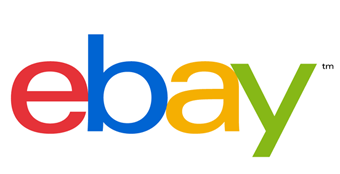 I understand companies need to refresh their identities from time to time. I have no problem with that. But I don’t get why any firm would want to swap a recognizable logo for a worse alternative. Microsoft did it last month, and now eBay has decided to follow suit and replace its jumbled multi-colored logo for a straighter, thinner version.
I understand companies need to refresh their identities from time to time. I have no problem with that. But I don’t get why any firm would want to swap a recognizable logo for a worse alternative. Microsoft did it last month, and now eBay has decided to follow suit and replace its jumbled multi-colored logo for a straighter, thinner version.The new design, which is going to start appearing across the site this fall, is apparently intended to "reflect a dynamic future", but mostly succeeds in being blander, and more Google-like. And it’s possible that some people might not even notice it’s changed since the colors remain the same.
According to Devin Wenig, President of eBay: "Our refreshed logo is rooted in our proud history and reflects a dynamic future. It’s eBay today: a global online marketplace that offers a cleaner, more contemporary and consistent experience, with innovation that makes buying and selling easier and more enjoyable. We retained core elements of our logo, including our iconic color palette. Our vibrant eBay colors and touching letters represent our connected and diverse eBay community -- more than 100 million active users and 25 million sellers globally and growing".
Changing the logo, he says, "was not a decision made lightly. The time felt right...we’ve evolved a lot in the past few years, and eBay is much more than auction-style listings today".
The press release also includes some interesting facts about the company, such as that it now handles almost 260 million searches a day, that 70 percent of listings are for new items, and that its mobile apps have been downloaded 100 million times.
-

Five great things about iPhone 5
Publié: septembre 13, 2012, 5:15pm CEST par Wayne Williams
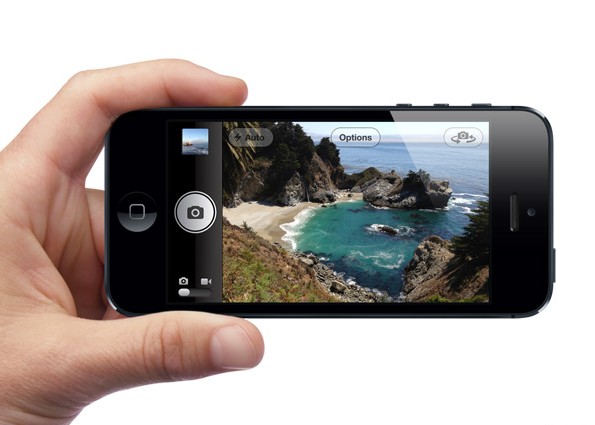
Let’s be honest, iPhone 5 is evolutionary, not revolutionary. It’s a clear improvement over the previous model but isn’t a huge leap forward, and in some places it’s just playing catch-up with rival devices.
While my colleague Mihaita Bamburic points out the downsides of the new handset, I’d highlight areas where it shines.
1. Speedier. The new Apple A6 chip is twice as fast as the old iPhone 4S's processor, both in terms of CPU and graphics performance. According to Apple, it will launch apps in around half the time. It’s rumored (and we’ll have to wait to see if it’s true) that the chip runs ARM Cortex A15 cores, beating Samsung to the punch.
2. Larger screen. Yes, fair enough, the new iPhone’s 4-inch screen isn’t as big as the Samsung Galaxy S III (4.8 inches) or the Nokia Lumia 920 (4.5 inches), but still is larger than its predecessor, and in a device that’s 18-percent thinner and 20-percent lighter than, too. In the hands of another company, the resized screen probably wouldn’t be much of a selling point, but Apple’s retooled all its apps, including iPhoto and Garage Band, to really make the most of that additional real estate, and as the old saying goes, it’s not the size but what you do with it that counts.
3. LTE/4G. The phone’s LTE connectivity is hugely welcome and lets you make the most of much faster speeds, provided your carrier offers it. A giant step forward for the iPhone. Yes, Samsung, which owns a large collection of LTE patents, may challenge the new phone, but it’s unlikely to succeed to get the device banned.
4. Better camera. The new iPhone is much thinner, but the camera is just as good, still offering 8 megapixels and 3268 x 2448 resolution. But it also has some great new features, including a dynamic low-light mode that can deliver up to two f-stops greater performance, combined with a new Image Signal Processor with spatial noise reduction. The camera’s sapphire crystal lens cover produces clearer images and won’t scratch easily. You can instantly share images on social sites using PhotoStream, plus the camera can now take panoramic shots (just like, ahem, the Galaxy Nexus), making it useful for creating cool Facebook cover photos.
5. Additional microphone. iPhone 5 has three microphones -- one built into the bottom, one at the front/top, and one at the back of the device. This helps to ensure good quality audio regardless of whether you're chatting on Facetime, using Siri or recording a video. It will also help with noise cancellation.
I’m not going to pretend iPhone 5 is streets ahead of the competition, but the new improvements do put it back in the race, and for me at least, it’s a solid upgrade that will appeal to many. Plus that aluminum and glass design is really nice…
-

Hey, Apple, where’s the innovation?
Publié: septembre 12, 2012, 9:09pm CEST par Wayne Williams
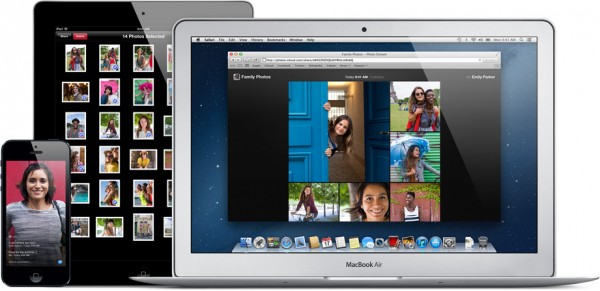
So the iPhone 5 has been unveiled and, well, it’s just a bigger version of the iPhone 4S. No great surprise there, as all the rumors and leaks predicted that would be the case. There are some other changes to the device of course; it’s faster, lighter, prettier and has a better camera and a new dock connector, but really it’s just Apple’s phone with a bigger screen, improved OS, and less Google.
If the reports are to be believed, and they are, in October Apple will introduce another new product -- a smaller iPad.
That's It?
Apple’s announcements and launches are always exciting -- just the suggestion of a new Apple device causes the world to sit up and take notice -- but at the same time they now come with a little something else. Something that CEO Tim Cook seems to have brought with him, and which we didn’t get when Steve Jobs was the man on stage: A slight, but unmistakable whiff of meh.
A taller iPhone, reshaped iPods, smaller iPad.
Really? Is this all you’ve got for us these days Apple? Larger and smaller variants of the same products?
Where’s the innovation, the ground-breaking, life-changing hardware you gave us over the last decade? I don’t expect everything you come up with to be as pioneering as the iPod, the iPhone or the iPad, but neither do I expect Apple, a company that berates other firms for failing to "invent their own stuff", to just keep rolling out re-sized versions of the same devices.
As my colleague Joe Wilcox expressed in reply to a question from a BetaNews reader:
The original iPhone changed the way people interacted with cellular handsets, by making them more human, more responsive. iPad evoked something more: Intimacy with the device and content. But what followed the original inspiration? Iteration along the same design principles. Iteration has its place. iPhone 4S offers many benefits over 3GS -- better display, higher-resolution camera and longer battery life, for example. But nothing like what made the original so special and stand apart from everything else.
What’s next after this year’s big launches? The iPhone 6 with built-in fingerprint recognition (Apple recently acquired AuthenTec Inc., which makes fingerprint recognition and near field communications software)? A gamer friendly iPad with touch sensitive controls on the back (Apple has the idea patented)? A Microsoft Surface-style MacPad, perhaps?
All great and very exciting possibilities, but at the same time, rather predictable and samey ones. If Apple is to keep its current position as the most valuable company in the world it needs to broaden its range and add something different to the mix.
Think Different, Not the Same
I can’t be alone in wanting to see something more daring and diverse come out of the Cupertino, Calif. corporation. A little invention to go with all this iteration. There’s certainly no shortage of areas that would suit Apple’s expertise.
The company has toyed with television but has so far failed to revolutionize the goggle-box in the same way it did the mobile phone and the portable music player. Sooner or later Apple could crack that challenge, and give us a truly worthwhile Apple TV. But the company has to focus on doing it properly. So far every TV product it’s given us has felt rather half-baked, like the will is there, but not the way.
Apple could, and should, produce a gaming system -- a rival to the Xbox 360 where games are purchased through the iTunes Store. It would be relatively easy to do and give the company a lucrative additional revenue stream. I’d want it to use some form of revolutionary control system of course -- like Kinect, but quicker and more accurate, and employing the iPhone and/or iPad in a Wii-U style way, perhaps.
We know Apple has a patent to produce a Google Glass-type product, so hopefully we’ll see that at some point, but then again maybe not. Apple has a lot of patents that never go anywhere or get turned into anything.
Ultimately though, what I would really like is to follow an Apple launch where the company introduces something, anything, that’s not just more of the same but in a different size, shape or color.
How about you?
-

Windows 8 won’t save ailing companies from disaster
Publié: septembre 12, 2012, 3:28pm CEST par Wayne Williams

We all know that Microsoft is taking a hell of a gamble with its new operating system. If Windows 8 fails, as many are suggesting it will, that would be a major blow to the Redmond, Wash.-based company. Microsoft is staking pretty much everything on Windows 8 and trusting that ubiquity -- placing the OS on desktop systems, tablets, and mobile phones -- will be enough to persuade people to give it a chance.
The problem: Microsoft isn't just risking its own business. With the traditional PC market stagnating, faltering companies like Dell and HP (which both reported large drops in revenue recently -- HP’s losses being the worst in its 73-year history) need a way of boosting their dwindling PC sales. In previous years, the arrival of a new operating system would have done exactly that. When Windows 7 launched, for example, sales of new computers jumped 40 percent in the first week alone. While PC sales will undoubtedly still increase following Windows 8’s launch, it’s unlikely we’ll see such a big jump as last time around. Partly because many of those relatively recent upgraders will be happy to stick with what they’ve got, and partly because Windows 8 runs better on lower-specced systems than its predecessor does anyway. For those reasons alone it’s unlikely that this version of Windows will drive hardware sales in the same way that previous ones did.
HP recently announced a range of touchscreen all-in-one PCs (the SpectreOne and Envy 20 and 23) and is clearly hoping that consumers will want to upgrade to devices like these to make the most of Windows 8’s touch capabilities. But will they? Or more to the point, why would they? Touch works brilliantly on tablets, but I don’t see the point of leaning over to prod my PC monitor when a keyboard and mouse (which HP’s computers still offer) is a far more comfortable experience.
The new OS will probably help tablet adoptions, but firms like HP and Dell aren’t going to benefit too much from that, especially when the only Windows 8 tablets people are really talking about are Microsoft’s own Surface devices.
Elsewhere, Nokia, which has been in freefall for some years, has decided to bet big on Windows Phone 8. But can its handsets -- as good as they might be -- really hope to steal enough of a market share from Apple, Samsung, or numerous other manufacturers? It’s unlikely. Microsoft’s mobile OS will shortly overtake BlackBerry to cement third place behind iOS and Android, but it’s not going to stand any chance of overtaking the leaders. So for Nokia that means trying to stage a recovery based on hawking handsets running the third most successful mobile operating system… and it’s not even the only manufacturer to be doing so. Ouch.
The fact that companies like HP, Dell and Nokia are having a tough time of it isn’t Microsoft’s fault. They were slow to react to changing markets and suffered as a result. But now they’re looking to Windows 8 for salvation and that means having to gamble alongside Microsoft that the new OS will defy the naysayers and prove to be the hit they all sorely need it to be.
-

Try SlimCleaner 4.0 before anyone else
Publié: septembre 10, 2012, 8:11pm CEST par Wayne Williams
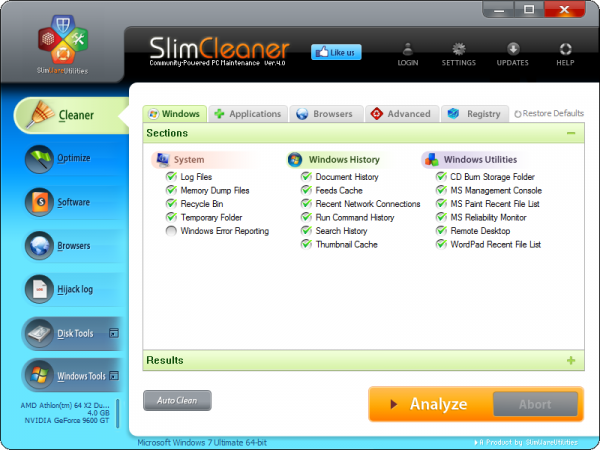
SlimWare Utilities provides popular, free software that cleans, speeds up and optimizes PCs. The company's products take a crowd-sourced, user-generated approach, so it makes sense that SlimWare would want to reach out to power users for feedback about its latest beta -- SlimCleaner 4.0 -- before launching the final version.
Right now, BetaNews readers can sign up for this special-access beta by hitting the link below and using a special code to download the app. This beta version will be available for a limited time before SlimWare releases the final version to the general public.
A few highlights about the SlimCleaner 4.0 beta:
The company's most comprehensive and ambitious software product for keeping PCs clean, optimized and running at peak performance, SlimCleaner 4.0 includes a duplicate file finder, an intelligent defrag and a software updater to keep all software installed on a PC current, along with other improvements and enhancements. This new build combines solutions to the most common PC problems and puts them in a single, easy-to-use, automated software product.
Intelligent Defrag: Allows users to run a personalized defrag based on their specific PC hardware. SlimCleaner will identify a PC’s drive after cleaning it and allow users to start a defrag based on settings intelligently determined by the PC’s hardware.
Software Updater: Lets users check for updates to the software on their PC and install those updates directly from SlimCleaner.
Solid-State Drive Optimization: The intelligent defrag system works with solid-state drives by organizing files into logically sequential sectors while minimizing wear on the drive.
Duplicate Finder: Provides users with a quick and automated way to find and eliminate duplicate files that can clutter and slow down their hard drive. The duplicate file finder wipes out extra or unneeded copies of files -- including text files, videos, music files, etc. -- that can take up space. The feature includes settings to allow for different levels of analysis.
To download the beta, click the link and enter BETANEWS as the download code.
You can leave requests, feedback, recommendations and report issues on the software at the SlimCleaner forum.
-

Amazon Appstore finally launches in Europe
Publié: août 30, 2012, 4:22pm CEST par Wayne Williams
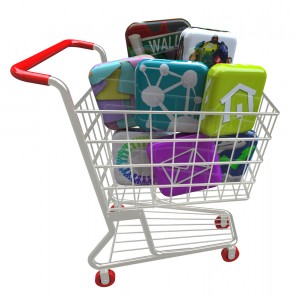 Amazon Appstore, the retail giant's marketplace for Android applications, has finally opened for business in the United Kingdom, France, Germany, Italy and Spain, a whopping 17 months after it first launched in the US.
Amazon Appstore, the retail giant's marketplace for Android applications, has finally opened for business in the United Kingdom, France, Germany, Italy and Spain, a whopping 17 months after it first launched in the US.Jim Adkins, vice president of Amazon Appstore, says of the marketplace’s overseas expansion: "Customers in the US have purchased millions of apps, games, in-app items and subscriptions since the store launched last year, and we’ve received great feedback about discovery features like Free App of the Day. We evaluate and test games and apps before making them available in the Appstore so we ensure customers have a great experience with the games and apps they purchase. Amazon has spent years developing innovative features that help customers find and discover the products that are right for them and have applied that know-how to the Amazon Appstore. We’re delighted to extend that experience to our European customers".
Each European store and its contents will be fully localized. In the United Kingdom, as in the United States, the marketplace will be called "Amazon Appstore for Android". In Germany, France and Italy it will be branded the "App-Shop", while Spanish users will be able to explore the delights of "Tienda Apps".
Although the launch of the Appstore in Europe is big news, more exciting: it suggests the Kindle Fire, Amazon’s Android tablet, is finally about to be released outside of the United States. After all, why would Amazon go to all the effort of creating these storefronts just to sell apps for competing devices?
Amazon is due to hold a press conference in Santa Monica, Calif on the 6th of September, with strong rumors suggesting it will announce Kindle Fire's successor (rumors that just got stronger with the news that the original version is now completely sold out). If this does prove to be the case, it’s possible we’ll see the tablet released globally in time for Christmas.
Photo Credit: iQoncept/Shutterstock
-

Samsung unveils Windows Phone 8 ATIV
Publié: août 30, 2012, 3:36pm CEST par Wayne Williams
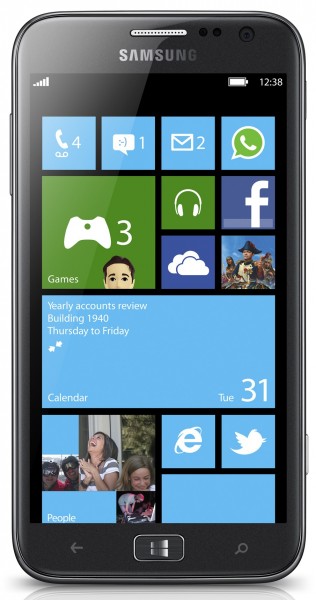 Samsung made a string of new product announcements at IFA in Berlin, including of course the much anticipated Galaxy Note II. But just when we thought we knew everything the South Korean company had in store for us, it surprised the gathered watchers by unveiling the ATIV S, the first handset to run Microsoft’s new mobile operating system.
Samsung made a string of new product announcements at IFA in Berlin, including of course the much anticipated Galaxy Note II. But just when we thought we knew everything the South Korean company had in store for us, it surprised the gathered watchers by unveiling the ATIV S, the first handset to run Microsoft’s new mobile operating system.The ATIV (VITA - "Life" in Latin - backwards) is the first in a whole range of Samsung products based on Microsoft’s software, and boasts a 1.5 GHz dual-core processor and 4.8in (121.9mm) HD Super AMOLED display. It also has an 8-megapixel rear-facing camera and 1.9MP-megapixel front-facing camera, making it competitive, but not ground-breaking. The smartphone will be for sale at some point between October and November, in time for Christmas.
What’s interesting about the announcement: Samsung, not Nokia, is the first company to introduce a range of Windows Phone 8 devices. The Finnish mobile firm -- long seen as Microsoft’s favored hardware developer -- is set to announce its Lumia line of Windows Phone 8 smartphones in New York on September 5. That Samsung beat it to the punch could be taken as a sign that Microsoft isn’t prepared to play favorites in its quest to be taken seriously in the mobile market, but could equally mean that Nokia has something big in store, and Samsung needed to get in quick to avoid its first slew of devices looking weedy by comparison. We’ll find out soon enough.
While the timing of Samsung’s commitment to the Microsoft platform might raise a few eyebrows, the fact it’s moving beyond Android won’t. Offering devices on two different operating systems is a smart move for the South Korean firm, and gives it options for the future.
"Samsung is delighted to introduce a wide portfolio of Windows 8 and Windows Phone 8-powered devices," Seong Woo Nam, executive vice president of IT Solutions Business at Samsung Electronics, says. "With our leadership in design and technology and Microsoft’s leadership in operating systems, together we are able to provide customers with a full range of ATIV devices for cross-category convergence."
"And that hopefully won’t get us sued," he might have added mentally afterwards.
-

New Android app eliminates driving distractions
Publié: août 23, 2012, 4:13pm CEST par Wayne Williams

Did you know that updating Facebook while driving can cause lane veering by up to one meter, or that texting adds 8.5m to the overall stopping distance when travelling at 70mph? Well, it’s true according to a new study by Transport Research Laboratory (TRL) on behalf of insurance company esure. The report also says that 1 in 5 drivers took their eyes off the road for 7 seconds when they heard a ringing phone. Check out the fancy PDF infographic if you want to find out more.
To help remove these distractions (and reduce the number of claims it has to process, presumably), esure has produced a free Android app which eliminates mobile phone distractions. The DriveOFF app, available through Google Play, uses GPS to detect when your car is in motion and travelling above 10mph and automatically turns off all other apps and blocks incoming calls and texts.
Stuart Vann, Chief Executive Officer at esure, says: “This study’s results speak for themselves. Distraction is a killer -- something that we’re all too aware of as a leading insurer. We would urge all motorists to download it and help remove any temptations of checking or answering a mobile whilst behind the wheel.”
An iOS version of the app has been developed but has yet to be approved by Apple.
Photo Credit: Poulsons Photography/Shutterstock
-

Tony Scott: Apple flogs old movies and profits from a man’s suicide
Publié: août 22, 2012, 7:22pm CEST par Wayne Williams
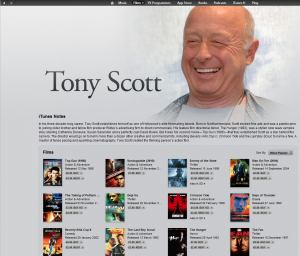 When film director Tony Scott committed suicide, Apple quickly put up a tribute to him on the iTunes store. Except the page is less of a tribute and more of a shop window. Underneath a picture of Scott, and a brief biography, are links to all of his movies available to rent or buy from Apple. It doesn’t mention his death, at all, just lumps all of his films together into a collection that’s prominently listed on the front Films screen.
When film director Tony Scott committed suicide, Apple quickly put up a tribute to him on the iTunes store. Except the page is less of a tribute and more of a shop window. Underneath a picture of Scott, and a brief biography, are links to all of his movies available to rent or buy from Apple. It doesn’t mention his death, at all, just lumps all of his films together into a collection that’s prominently listed on the front Films screen.When I first encountered the so-called tribute page, I was a little dismayed. When someone dies, the proper etiquette is to mourn them, and to reflect on their lives and on their achievements. It isn’t, generally, to try and make a quick buck from their passing. But that’s exactly what Apple has done here -- and it's not the first time.
Although Tony Scott was the creative force behind some major blockbusters, including Top Gun, Days of Thunder, Crimson Tide and Unstoppable, he wasn’t a massive success like his brother Ridley. And so he would never be the subject of a collection, such as the one Apple put together, if still alive today. This move isn’t about "Remembering Tony Scott" as iTunes dresses it up. Apple flogs old movies and profits from a man’s suicide.
What kind of company does that?
A mega successful corporation that places the bottom line above all else including, it seems, compassion and basic human decency.
Now, I’ve forgiven Apple a lot over the years. I said I wouldn’t boycott it over its patent war with Samsung, and while all those reports of suicides at Foxconn disturbed and saddened, I didn’t feel they were actually Apple’s fault. But this is just too callous a move, even for an Apple apologist such as myself.
Was the idea of doing this "tribute" raised in a company meeting? Did someone say "Hey, Tony Scott chucked himself off a bridge. We could use his death to make money!" Did everyone else nod and high-five at the brilliance of the opportunity? Did no one say "Hey, we’re worth $623 billion, do we really need to sink this low?"
When a famous singer dies, fans often react to the news by purchasing that person’s back catalogue. Michael Jackson and Whitney Houston’s albums stormed the iTunes chart and dominated for quite some time after their deaths. It could be said that by creating "tribute collections" Apple is just helping consumers to find those products.
But is it really? People know how to browse, they know how to search, and they know how to buy products in charts. When you go to a memorial service you listen to people sharing their individual recollections of the deceased, and you share your own. You don’t need someone selling you a book of "favorite memories" and indeed you’d be outraged if they tried.
To be fair, Apple isn’t the only company happy to profit from loss. When Whitney Houston died, her record label Sony responded to the tragic news by doubling the price of her greatest hits album. It later apologized and said it was an "employee error". What's Apple's excuse?
-

Disable the Windows 8 Charms bar
Publié: août 21, 2012, 6:52pm CEST par Wayne Williams
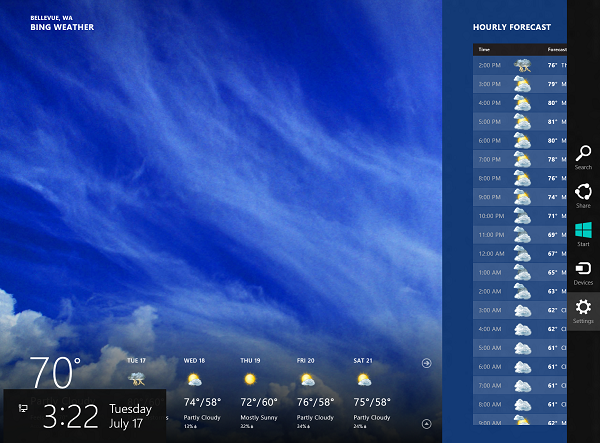
Microsoft’s new OS has a ‘Charms’ bar, which provides quick access to commonly used tasks -- Search, Share, Start Screen, Devices and Settings. It appears on the right-hand side of the screen when you move your mouse to either the top or bottom right corner. It’s an integral part of the Modern UI, but can get in the way on occasion. Fortunately, you can disable the two hotspots that cause the bar to appear by making a simple registry tweak.
Open the Run box by hitting Win+R, and then launch the Registry Editor by typing regedit into the box and hitting enter. Navigate to HKEY_CURRENT_USER\Software\Microsoft\Windows\CurrentVersion\ImmersiveShell, right-click in the right-hand pane and create a new key called EdgeUI. Select the key and in the right-hand pane create a new DWORD and call it DisableCharmsHint. Right-click the DWORD and select Modify. Change the Value Data to 1. This will stop the Charms bar appearing when you move your mouse to the top or bottom right-hand corners.
Quit the registry editor and try to summon the sidebar. You should find it no longer appears. You can, however, call it up by dragging your mouse upwards along the right screen edge, or, more easily, by pressing Win+C. You can also activate individual charms using the following keyboard shortcuts:
Search: Win+Q
Share: Win+H:
Devices: Win+K:
Settings: Win+I:
If you want to reactivate the hotspots, just change the new DWORD settings from 1 to 0.
-

Nook out! Barnes & Noble's ebook readers come to the UK in October
Publié: août 20, 2012, 6:26pm CEST par Wayne Williams
 US bookseller Barnes & Noble has confirmed that it will be bringing its Nook digital eBook readers and bookstore to the UK in the autumn. Initially the devices, which include Nook Simple Touch and the Nook Simple Touch with GlowLight, will only be available through the company’s online storefront at [nook.co.uk] (which currently redirects to the main Barnes & Noble site). However, according to the company, the devices will additionally be available through various "leading retailers", which the company expects to announce shortly.
US bookseller Barnes & Noble has confirmed that it will be bringing its Nook digital eBook readers and bookstore to the UK in the autumn. Initially the devices, which include Nook Simple Touch and the Nook Simple Touch with GlowLight, will only be available through the company’s online storefront at [nook.co.uk] (which currently redirects to the main Barnes & Noble site). However, according to the company, the devices will additionally be available through various "leading retailers", which the company expects to announce shortly.Speaking about the upcoming launch -- the first time the company has expanded its business outside of the United States -- William J. Lynch, Chief Executive Officer at Barnes & Noble, says, "We are proud to be able to offer our top-rated line of Nook reading devices and our award-winning digital bookstore to the discerning and highly educated consumers in the UK. We’re confident our award-winning technology, combined with our expansive content -- including books, children’s books, magazines, apps, movies and more -- will bring UK customers the option they’ve been waiting for."
The company’s choice of partners will be crucial if Nook is to make a significant impact in the United Kingdom, as the two largest high-street booksellers both have deals in place with rival companies. Waterstones recently announced it would start selling Kindles, including the soon to be launched Fire, while WH Smith offers the Kobo range of devices. As it’s unlikely either of those retailers will be interested in offering the Nook, Barnes & Noble will doubtless be looking to target the main supermarkets and department stores, where Kindles and Kobos are also already firmly established.
No pricing details have been released yet, but Barnes & Noble will have to take an aggressive position if the company is to stand a chance of replicating its Stateside success in the UK, where it is a relative unknown.
-

Big Fish Games brings real-money gaming to Apple's App Store
Publié: août 16, 2012, 9:30pm CEST par Wayne Williams
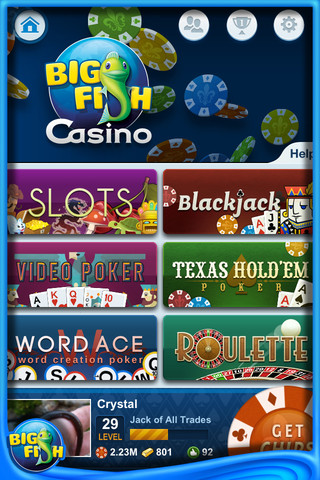 Social gaming just used to be about having fun, but now there’s a real-money element creeping in. First Gamesys launched a Facebook app that allowed UK residents aged 18 and over to play for real cash prizes while interacting with friends, and now Big Fish Games is getting in on the act with Big Fish Casino for iOS devices. The game is a relaunched and rebranded version of Card Ace: Casino, from recently acquired Self Aware Studios, that offers new games and additional social features, and will soon also allow UK users to play slots for real money.
Social gaming just used to be about having fun, but now there’s a real-money element creeping in. First Gamesys launched a Facebook app that allowed UK residents aged 18 and over to play for real cash prizes while interacting with friends, and now Big Fish Games is getting in on the act with Big Fish Casino for iOS devices. The game is a relaunched and rebranded version of Card Ace: Casino, from recently acquired Self Aware Studios, that offers new games and additional social features, and will soon also allow UK users to play slots for real money.If the thought of wagering your earnings on spinning reels doesn’t do it for you, you might be more interested to hear that the real-money feature, powered by UK-licensed online gaming company Betable, will also be available in blackjack, roulette and video poker in the coming months.
Paul Thelen, Founder and CEO of Big Fish, says of the new game, "We have a strong conviction that mobile apps that combine social and real-money gambling are a powerful way to engage more users and increase overall monetization. With its real-time social interaction features and the thrill of real-money gambling, Big Fish Casino is the closest mobile users can get to the buzz and excitement of playing these games in a real-world casino".
More and more real-money apps are set to arrive on Facebook and in the Apple App Store in the next few months. Although they’ll only be available in the UK to begin with, due to the country’s well regulated gambling controls, it’s possible they may spread to other English speaking countries in due course and possibly even to the US, if lobbying efforts by the likes of Zynga succeed in getting the Internet Gambling Consumer Protection and Public-Private Partnership Act of 2012 through the House and Senate.
-

Laplink CEO: Windows 8 will ensure Microsoft's dominance in the enterprise
Publié: août 15, 2012, 6:25pm CEST par Wayne Williams
You can’t have failed to notice that Windows 8 is attracting a lot of negative press. Some commentators, such as myself, have said it will flop, others that it will be the new Vista.
But not everyone thinks the updated operating system is a disaster. Thomas Koll, CEO of Laplink, is actually pretty positive about Windows 8's chances, and took the time to sit down with me and share his views about that and other topics, including flat PC sales, Microsoft Surface and tablet adoption in the enterprise.
Could you please provide a bit of background on yourself for the benefit of the readers.
[TK] Sure. I’m a Microsoft alumnus from 1988 -- 2001. All of my positions at the company were in sales-related functions, including corporate sales, country manager Microsoft in Germany, corporate vice president at Microsoft in Redmond responsible for one of the five sales divisions.
I’ve been the CEO of Laplink since 2003. For over 25 years, Laplink has been a global leader in PC connectivity, helping more than 15-million PC and Mac users worldwide who migrate, transfer, synchronize, share and remotely access billions of files per week.
Great. Let’s start by talking about the PC market. Second-quarter PC shipments were poor. They're flat globally, and down somewhere between 5 and 10 percent in the United States. Why do you think this is, and what do you see happening in the future?
[TK] The PC market is weak for several reasons. The weak economy has negatively impacted consumer spending overall, which includes computers. But perhaps more importantly, many consumers are choosing to use their limited budgets to buy new and additional devices like smartphones or tablets. I think only a small percentage of consumers have actually replaced their PCs with a tablet (and even less with a phone), but they clearly are extending the life of their existing PCs and not replacing them.
The result is many PC purchases have been postponed; for consumers who do much of their "consuming" (email, Facebook, music, video) on non-PC devices, they can squeeze a few more months (or years) out of their computers. Extending the life of existing PCs, a weak economy, and spending on non-PC devices has combined to significantly slow sales.
But the PC is not dead. We may love our iPads, we may love our new phones, but we’ll keep a PC around. It’s just that we won’t replace it as frequently as in the past.
Windows 8 is dividing opinion with some people predicting the new OS will be the next Vista. What do you make of it?
[TK] It certainly will not be Vista. Vista was considered a technology problem. Big memory needs, incompatible with the existing applications, high expectations from users. Win8 addresses a different set of issues. It brings a consistent UI across form factors, is very focused on the consumer buyer, and retains compatibility with older applications.
There will definitely be a group of people not liking it, but I hear more and more positive comments. Due to the additional market it addresses, there will be very controversial discussions (like iPad vs. Win8UI), but these should not to be compared with the traditional Windows PC user community’s opinion.
What features do you like and dislike about the new OS?
[TK] I like the new style UI, faster integration with data sources, compatibility with Win7 apps. But I don’t like that the classic view is being reduced in functionality. There is no good reason to switch to a new apps start-up model (no Start menu).
Are there enough features for the business user? Will the new UI entice business users to switch? I think there is a risk that some users (and perhaps many businesses) will want to downgrade new PC purchases to Win7. There’s nothing wrong with that, but it will create negative publicity.
What do you think Microsoft needs to do to succeed with its Windows 8 launch in order to reclaim the ground the company has lost over the past decade?
 [TK] The debate about the "lost decade" is a bit silly. Microsoft has made great improvements in the last 10 years. The enterprise market has grown very strongly, new markets like the Xbox conquered; new communication products like SharePoint are dominating…
[TK] The debate about the "lost decade" is a bit silly. Microsoft has made great improvements in the last 10 years. The enterprise market has grown very strongly, new markets like the Xbox conquered; new communication products like SharePoint are dominating…Yes, Microsoft did not have the "usual" wins in the smartphone and tablet markets, which today dominate the "excitement factor" for many consumers, but these things can change quickly. Some years ago, everyone thought that netbooks running Linux were a major threat to Microsoft. But in the end, most Netbooks ran Windows.
Apple and Android did a great job of creating a new market, but don’t count Microsoft out yet. That being said, I do think Win8 needs to challenge these alternative operating systems. That won’t be easy.
But let’s not forget that we use a lot of Microsoft products on these non-Windows devices such as Exchange, Office, Skype, etc. With Skype alone, Microsoft has the potential to dominate the Internet calling/communication market.
For me, I think Win8 success will mean that Microsoft will be able to defend its enterprise dominance and get Win8 tablets as the default choice for corporate users. And, of course, the company will need to obtain some share of the existing premium tablet market for consumers. (I expect Apple will stay the premium market leader and Android the lower-cost choice). If Microsoft can do this while turning Surface into a hit, then that’s a pretty good outcome for the company.
Microsoft will remain a dominant ecosystem, but we will certainly see alternates become more and more available for consumers, like Apple and Google. However, these guys only play in the consumer space and they have no offerings for businesses or government, today. Microsoft must use Win8 to keep Apple and Google confined primarily to the consumer space.
Laplink has forecast there will be 125 million users of Windows 8 in the United States alone within 18 months of it being released, with a large proportion coming from consumers buying new hardware to take advantage of the OS’s capabilities. What’s this predication based on?
[TK] Win8 will be shipped by all OEMs. Automatically it will be as successful as Win7 unless the PC market crashes. If 350-million PCs are shipped in the next 12 months, then it will be easy to reach those numbers. I would think that this number is conservative for 18 months given that there likely will be an increase because of availability in different form factors than in the past, as well as the proliferation of non-PC devices as WinRT tablets.
What’s your view on tablets? Will they totally replace laptops and/or desktops in the future?
[TK] No, definitely not, but the form factors will morph somewhat. Is Surface a tablet or a PC? Yes. Is a WinRT a PC? Might not be. However, the tablet (with keyboard) might replace a certain percentage of PCs that have been used for "consumption" (email, web browsing, limited text input). I think tablets and phones are like microwave ovens -- very convenient, very easy, but every home still has a conventional oven.
What do you think about Surface?
[TK] It looks like a good tablet (with a keyboard). Microsoft has to transform itself into a company with a hardware division, which should not be the biggest problem, as it has done so for Xbox and peripherals in the past. But if Surface can scale, it will be a major transition for Microsoft. If that happens, we can expect a major reorganization to follow.
Laplink has said it envisions significant enterprise adoption of Windows 8 tablets, but will businesses really want to spend a fortune on new technology? Surely maximizing their existing hardware makes greater sense?
[TK] Businesses will spend on new technology if there’s a positive ROI attached. Already, tablets are coming into the enterprise -- mostly iPads. Today, 50 percent of business desktops are still on XP, but almost all will soon move to Win7 or Win8. A normal adoption cycle to Win8 will start in about 18 months, but it will be far easier (and cheaper) to manage a Win7/8 environment than a Win7/iOS environment. Tablets in the enterprise are a given, and because Win8 tablets will have a better ROI than iOS, Microsoft has a great chance to get significant adoption of Win8 tablets.
And finally, do you see Windows 8 as being a good or a bad thing for your business?
[TK] I believe a good thing. We will see expanded interest in PCMover (again, our view is that the PC is not dead) and also our sync products, which are needed to keep your data in sync between all your devices (including PCs).
-

The cloud is still the safest place to be for small-to-medium businesses
Publié: août 15, 2012, 3:35pm CEST par Wayne Williams
 Cloud security has been a hot topic in the news lately. While most of the hacks reported in the press have affect consumers and popular free services, there’s no question that some businesses will be concerned, in the light of all these negative reports, about just how safe their off-site data actually is. It’s one thing for an individual like Mat Honan to lose his digital identity, but if a business loses the data it has stored in the cloud (or worse still, if it should fall into the wrong hands), that can have truly catastrophic consequences, both in terms of monetary loss and damage to reputation.
Cloud security has been a hot topic in the news lately. While most of the hacks reported in the press have affect consumers and popular free services, there’s no question that some businesses will be concerned, in the light of all these negative reports, about just how safe their off-site data actually is. It’s one thing for an individual like Mat Honan to lose his digital identity, but if a business loses the data it has stored in the cloud (or worse still, if it should fall into the wrong hands), that can have truly catastrophic consequences, both in terms of monetary loss and damage to reputation.The perceived risk of cloud storage might have some small-and-medium businesses rethinking their strategy and looking to return to the old days of just backing up locally. But doing so could actually put company data at far greater risk. If the firm’s servers fail as a result of a cyberattack or a natural disaster, it’s going to be much harder to affect a speedy recovery.
While handling data management in-house might seem like a possible cash-saving solution, it can actually work out to be far more expensive in the long run. For starters, there’s the wages of the on-site staff that will need to be employed to ensure the smooth running of everything, including keeping on top of the security standards and regulations. Giving the task to an existing employee, in addition to their day to day duties, will just increase the risk of important updates not being applied in a timely fashion. It’s a worrying fact, according to Verizon’s 2012 Data Breach Investigations Report (DBIR), that 96 percent of hacked businesses surveyed were not compliant with the Payment Card Industry Data Security Standard (PCI DSS) when they were attacked, and 92 percent of all breaches were identified by third parties, typically weeks or even months after the event.
The truth is, despite the recent scare stories, dedicated cloud storage still offers the best solution for most businesses. Cloud providers are typically less attractive to hackers because they invest far more in security than the average SMB could ever afford. They’ll also offer physical security at their storage sites, to prevent someone breaking in and making off with the data the old fashioned way (according to Verizon’s DBIR, 10 percent of all recorded breaches was down to a lack of physical security).
Of course, it’s important for businesses to identify the right provider for their needs, and you really do get what you pay for when it comes to cloud storage. Choose a cheap solution from someone without a proven track record, and there’s the risk they might not be up to the task (or worse still could go bust). If you have a company that’s considering moving your data to the cloud, Verizon Business, which offers a suite of cost effective enterprise-class cloud services, suggests asking the following questions of any potential provider before giving them your business:
- Do they have tight physical security, such as 24x7 human guards and biometric screening, to positively identify visitors, as well as video cameras for facility monitoring?
- Where will your data be stored? Will your provider use its own secure facility or farm out processing and storage functions to a third party?
- Can they verify that all software patches, anti-virus signatures, anti-malware, and security policies are up to date and applied consistently?
- Do they have cloud-specific firewalls for virtual machines to prevent intrusions?
- What are the company’s backup practices, and do they replicate data and application infrastructure across multiple sites?
- Is a complete restoration possible, and if so, how long will it take?
- Does their data center have uninterruptible power supplies, climate control, and fire prevention and suppression?
- Data in the cloud is typically in a shared environment, resulting in files from multiple companies residing on the same servers. Does the provider offer strong isolation and compartmentalization at every layer of the multi-tenant architecture to protect against unauthorized access?
- Do they offer tested encryption methods for file transfers, support for customer pre-encrypted file storage, and strong authentication?
- Does the provider comply with standards designed to control access by the people who manage your data?
- And finally, if you foresee specialized requirements not met by shared resources, can the provider offer additional protections through dedicated systems and private IP networking options, such as application log monitoring, virtual private networks, and migration strategies and services?
All good questions, and ones that any competent cloud provider should be able to answer with ease. If they can’t, or the answers seem vague or uninformed, walk away. Your company’s data is too valuable to risk.
Photo Credit: Jirsak/Shutterstock
-

Google wants a slice of Apple’s pie, starts punishing pirate sites
Publié: août 11, 2012, 4:36pm CEST par Wayne Williams
 It had to happen eventually. Representatives of the media and entertainment industries have been complaining for years about Google linking to sites that offer copyrighted content, accusing the Internet giant of not doing nearly enough to prevent access to infringing material. The company’s stock response has always been that it only indexes the web, and the results that appear when someone types a query into Google simply reflects the sites that people go to, and other sites link to. It’s a fair argument, although one somewhat undermined by last year’s algorithm update that targeted content farms, and showed the company’s willingness to tweak what sites appear where in its index.
It had to happen eventually. Representatives of the media and entertainment industries have been complaining for years about Google linking to sites that offer copyrighted content, accusing the Internet giant of not doing nearly enough to prevent access to infringing material. The company’s stock response has always been that it only indexes the web, and the results that appear when someone types a query into Google simply reflects the sites that people go to, and other sites link to. It’s a fair argument, although one somewhat undermined by last year’s algorithm update that targeted content farms, and showed the company’s willingness to tweak what sites appear where in its index.Google does of course remove pages when it receives copyright removal notices to do so. In fact, in an effort to demonstrate just how actively, Google recently expanded its Transparency Report to show how many URLs it removes, from where, and at whose request. The figures are staggering. In the last month alone, Google removed over 4.3 million URLs from its index.
But despite efforts to combat piracy from within the confines of the law, Google’s unwillingness to proactively police the Internet on behalf of the music and movie industries has unquestionably impacted the company’s ability to sign content deals with the major players of the entertainment world, especially overseas. And that’s a huge issue for a firm that really wants a slice of Apple’s pie.
So, inevitably, Google has caved in and starting next week the company will begin using the number of copyright removal notices it receives for a given domain to adjust that site’s ranking in the search index. This will, in Google’s words, “help users find legitimate, quality sources of content more easily” but in reality is designed to punish pirate sites without giving the appearance of having capitulated to the entertainment lobbyists. Although in the blog post explaining its move the search giant stresses “we won’t be removing any pages from search results unless we receive a valid copyright removal notice from the rights owner”, burying the sites somewhere near the bottom of the pile will effectively achieve the same result.
While the move will have little impact on seasoned pirates, it may deter casual downloaders who rely on Google to guide them to the sites they need, and in time kill off some of those sites.
The entertainment industry is, naturally, very happy about this latest move. In a statement, Michael O'Leary, the senior executive vice president for global policy at the Motion Picture Association of America, said, "We are optimistic that Google's actions will help steer consumers to the myriad legitimate ways for them to access movies and TV shows online, and away from the rogue cyberlockers, peer-to-peer sites and other outlaw enterprises that steal the hard work of creators across the globe." He didn’t add “Watch out for great new entertainment content coming to Google Play soon” but I expect we’ll see the fruits of this change there soon enough nonetheless.
While I personally have no problem with pirate sites tumbling down Google’s rankings, the fact that the company has shown a clear willingness to change its index -- to present a false view of the Internet -- in order to appease potential content partners is unquestionably troubling and puts the search giant at the top of a very slippery slope.
What’s next? Tweaking its index to give priority to Android over Apple? Favoring sites that have negative things to say about competing products and services? Preferring one political party over another in exchange for certain promises? Maybe not immediately, but now it seems Google is willing to change what we see when we search in order to benefit itself, can we really say for certain it won’t take such steps in the future?
Photo Credit: Yuganov Konstantin/Shutterstock
-

Chinese 'kidney for iPad' trial starts
Publié: août 10, 2012, 7:49pm CEST par Wayne Williams
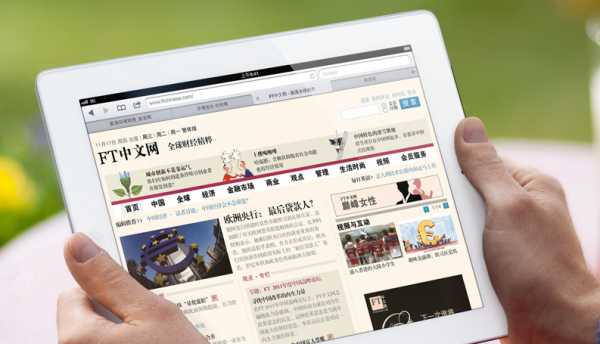
Nine people have gone on trial in the central province of Hunan, China, accused of illegal organ trading and intentional injury after a 17-year old high school student sold one of his kidneys to buy an iPad and iPhone. The teenager, identified in a report by the state-run China Daily as Wang Shangkun from the Anhui province, was allegedly recruited through a chat room by one of the defendants, and paid 22,000 Yuan ($3,456) for the organ, which was removed in an illegal transplant operation by a team from a local hospital. The kidney was sold by the gang behind the trade to an unknown buyer for 150,000 Yuan ($23,566) and a further $10,000 in cash, netting them a profit of around $30,000.
While to Westerners $3,458 seems a shockingly low price to sell a kidney for (especially considering how much the recipient was willing to pay), it’s important to put that figure into context. The average wage paid to workers assembling Apple products at Foxconn is around 2,200 Yuan ($346) a month, so the figure Wang received would have equated to nearly ten months’ salary for someone working at the plant -- a colossal amount of money to a young man still in full-time education.
The trade came to light when the teenager’s mother asked her son how he could afford to buy such expensive electrical devices (the price of an iPad in China starts at 2,988 Yuan ($469) while the most basic iPhone costs 3,988 Yuan ($627) and he confessed all.
Wang reportedly suffered renal failure shortly after the operation and was still too ill to attend the trial’s opening, although his mother, appearing on his behalf, told the court that she did not believe her son had sold his organs expressly to buy Apple products, but had done so because he was concerned about being caught in possession of such a large amount of money.
China banned the trading of human organs in 2007, but demand has led to a growing black market. The Ministry of Health estimates around 1.5 million people in China currently need transplants, but just 5,253 received one in 2011, according to the national kidney transplant registry.
Five of the defendants, including the surgeon who performed the operation, face up to 10 years in prison if found guilty, while the four others, who played more minor roles, will be liable for fines. Wang’s representatives are reportedly seeking 2.77 million Yuan ($435,192) in compensation or, to put it another way, just under 928 iPads.
-

New Google trial includes Gmail in search results
Publié: août 9, 2012, 3:50pm CEST par Wayne Williams
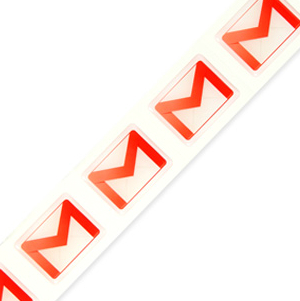 Google is always trying out new ideas, and its latest experiment will allow users to locate personal Gmail messages through Google Search. Once enabled you just type what you’re looking for into the search box, and if there are any matching emails stored in your Gmail account they’ll be pulled out and displayed in a sidebar on the right of the results page. You can also search for contacts at the same time and, as a bonus, get updated information and statuses for any flights mentioned in Gmail messages.
Google is always trying out new ideas, and its latest experiment will allow users to locate personal Gmail messages through Google Search. Once enabled you just type what you’re looking for into the search box, and if there are any matching emails stored in your Gmail account they’ll be pulled out and displayed in a sidebar on the right of the results page. You can also search for contacts at the same time and, as a bonus, get updated information and statuses for any flights mentioned in Gmail messages.At first glance this latest innovation might not seem a particularly useful feature, but it will allow you to find important messages without having to go into Gmail, simply by typing what you’re looking for into your browser’s search field. Obviously the results will only be visible to you and not to other users.
This is only a limited trial at the moment, so you’ll need to register your interest if you want to take it for a spin (Google Apps users aren’t eligible, unfortunately). Depending on demand, it may not be enabled for everyone who applies, and there’s the possibility, like many Google experiments, it won’t make it beyond the trial stage, although this idea does seem like the sort of thing the search giant will be keen to implement across the board.
A good idea or a bad idea? Let me know what you think in the comments below.
-

10 interesting things we’ve learned from the Apple vs. Samsung trial (so far)
Publié: août 8, 2012, 9:21pm CEST par Wayne Williams
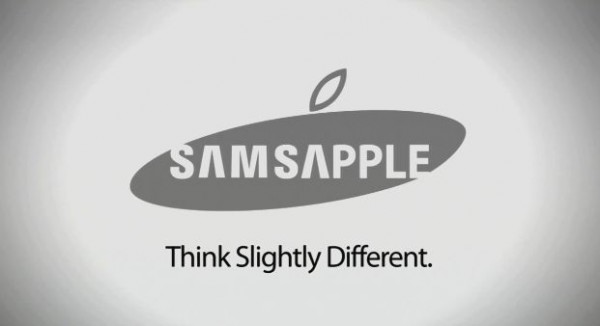
We’re only into the second week of the "patent trial of the century" but we’ve already been granted an unprecedented peek behind the curtain into the notoriously secretive world of Apple Inc. Here, in no particular order, are ten of the most fascinating reveals from the trial to date.
Steve Jobs was open to the idea of a seven inch iPad
Although Steve Jobs famously dismissed the idea of Apple making a smaller iPad, saying in 2010: "The reason we [won't] make a 7-inch tablet isn’t because we don’t want to hit [a lower] price point, it’s because we think the screen is too small to express the software," he was apparently coming around to the idea prior to his untimely death last year. In an internal email sent to several top executives at Apple in January 2011, senior vice president of Internet Software and Services, Eddy Cue, said he’d voiced the idea of a 7in tablet to Steve Jobs several times since thanksgiving, and that the CEO had "seemed very receptive the last time."
Apple considered making a car
Phil Schiller, Apple’s senior vice president of worldwide product marketing, told the court that the success of the iPod made the company realize that it could do much more than just make computers, and that revelation had led to a rash of ideas and suggestions, including one for an Apple car. Obviously the idea never gained any traction, and was probably never intended to be taken too seriously, but I for one would have loved to have seen Jonathan Ive’s take on automotive design (he drew cars amongst other things pre-Apple, but never really seriously).
Apple took three years to design the iPhone
In walking the jury through Apple’s product line, company attorney Harold McElhinny said work began on creating a "phone with the capabilities of a computer" in 2003. During Apple designer Christopher Stringer’s testimony, the court was shown a slide that showed the outer design for the iPhone was finalized in April 06.
The iPhone’s codename was "Purple Project"
Scott Forstall, senior vice president of iOS Software at Apple, revealed to the court that the iPhone was developed under the codename "Purple Project" and that the engineers who would be working on it had to come from within Apple and weren’t told anything about what they’d be doing until after they were onboard. The building they worked in was nicknamed the "Purple Dorm" and had a Fight Club sign on the door because, according to Forstall, the "first rule of the Purple Project is you don’t talk about Purple Project."
Apple’s products are designed at a kitchen table
Chris Stringer told the court that the Apple creation process often involved a group of designers sitting around a kitchen table and brainstorming various design aspects before turning the resulting sketches into 3D models using CAD software. "We'll sit there with our sketch books and trade ideas," he said, because that’s where the group is "most comfortable."
The iPhone could have had curved glass on both sides
Around 40 prototype designs for the iPhone were released in court documents filed by Apple, including one with curved glass on both sides. According to one of Apple's former designers, Doug Satzger, the idea was abandoned for a combination of cost reasons and technical difficulties. "The technology in shaping the glass, the cost relative to shaping the glass at the time, and some of the design features of this specific shape were not liked," he explained.
The iPhone screen was designed to look like a pond
According to Christopher Stringer, one of the design goals for the original iPhone was to make it as simple as possible and have a screen that looked like a "dark, oily pond" when off. Not exactly how most people would want to describe their iPhones.
The going rate for an expert witness
Under questioning, industrial designer Peter Bressler, told the court that Apple was paying him $400 an hour to act as an expert witness in the case, and that he’d earned $75,000 so far. Nice work for a job that basically appears to involve just looking at phones and tablets and saying "that’s a bit similar." Apple’s second expert witness, former Apple graphics designer and self-described "icon expert" Susan Kare, told the court she was getting $550 an hour, and had made about $80,000 in total. The third expert witness, marketing expert Russell Winer. told the court he was being paid $625 an hour and had earned about $50K so far. $625 an hour? Peter Bressler must be kicking himself.
Apple has spent more than one billion dollars on marketing the iPhone and iPad
In his testimony, Phil Schiller said the company had, prior to the end of fiscal 2011, spent $647 million on marketing the iPhone in the US alone, and $457 million on the iPad. Although that sounds like a lot of money, it isn’t really when you consider the company made $39.2 billion in revenue in the second fiscal quarter of 2012 alone.
Apple does do market research
Steve Jobs wasn’t a fan of market research and once said, "You can't just ask customers what they want then try to give that to them. By the time you get it built, they'll want something new." However, court documents showed that the company does carry out regular surveys to understand how buyers use their devices. One such survey showed that 78% of users owned a case or bumper for their iPhone.
-

Real-money gambling arrives on Facebook
Publié: août 7, 2012, 8:24pm CEST par Wayne Williams
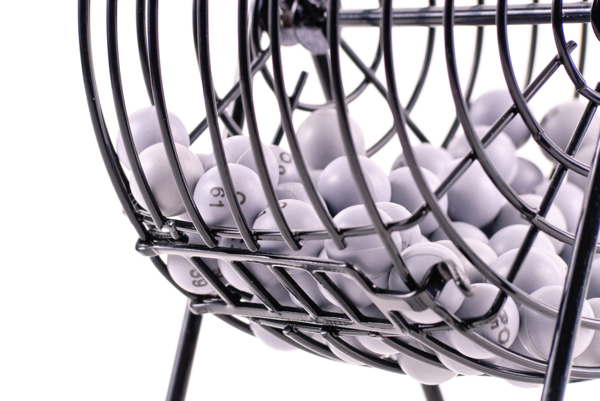
Although online gambling is essentially illegal in most US states, in the UK it’s both very popular and well-regulated. Facebook has been in discussion with a number of UK-based operators about introducing real-money games to the social network since last summer, and the first of what will likely become a deluge of gambling apps has finally arrived on the site. The new game, from UK-based Gamesys, is called Bingo and Slots Friendzy and will allow British users aged 18 and over (and in possession of a credit card) to play for real cash prizes while chatting with friends. As is the case with most online gambling games in the UK, this one comes with a big cash incentive for new players. Deposit £10 to get £30 to wager.
Commenting on the launch, Facebook’s Head of EMEA Gaming Partnerships, Julien Codorniou, said, "People love playing new types of games with their friends on Facebook and real money gaming is a popular leisure activity in the UK. We’re delighted to be working with Gamesys to enable them to offer their games on Facebook so that people can enjoy playing more games with their friends."
Facebook sees online gambling as being a useful additional revenue stream, and provided everything goes well with Bingo Friendzy, we can expect to see real-money games coming from all of the major players, including (naturally) Zynga, Facebook’s largest gaming partner.
Photo: jcjgphotography/shutterstock
-

There are more than 83 million active 'fake' users on Facebook
Publié: août 2, 2012, 3:41pm CEST par Wayne Williams

Tucked away in Facebook’s company filings published this week, was an interesting snippet of information. Although the social network had 955 million Monthly Active Users (MAUs) as of June 30, 2012, an increase of 29 percent from this time last year, some 8.7 percent of that figure – around 83 million users - were identified by Facebook as likely to have come from fake sources.
The number of people actively using the service is calculated using internal company metrics based on the activity of user accounts, and Facebook has determined that roughly 4.8 percent of its MAUs may have originated from duplicate accounts, with a further 2.4 percent coming from user-misclassified accounts (that is personal profiles created instead of pages for businesses or "non-human entities," like pets), and 1.5 percent from undesirable accounts (those created by spammers, for example).
In the report Facebook says "We believe the percentage of accounts that are duplicate or false is meaningfully lower in developed markets such as the United States or Australia and higher in developing markets such as Indonesia and Turkey. However, these estimates are based on an internal review of a limited sample of accounts and we apply significant judgment in making this determination, such as identifying names that appear to be fake or other behavior that appears inauthentic to the reviewers. As such, our estimation of duplicate or false accounts may not accurately represent the actual number of such accounts. We are continually seeking to improve our ability to identify duplicate or false accounts and estimate the total number of such accounts, and such estimates may be affected by improvements or changes in our methodology."
Facebook’s metrics are also thrown by mobile applications that connect to the social network automatically, without any user participation, although the company believes this equates to less than 5 percent of its Daily Active Users (DAUs).
While there’s little that Facebook can really do to identify and prevent fake user accounts, the news that 8.7 percent of all its active monthly traffic has come from such sources won’t sit well with advertisers. Especially those worried (in the light of a recent BBC investigation) whether or not their campaigns are actually reaching real people.
Photo: Elwynn/Shutterstock
-

5 things I hate about Gmail
Publié: août 1, 2012, 8:32pm CEST par Wayne Williams
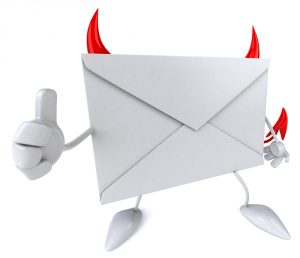 Let me preface this article by saying I’m a long time Gmail fan. I signed up as soon as an invite came my way, and have used it as my primary email service ever since. Although I now have an Outlook address, and really like what Microsoft has done with its Hotmail replacement so far, I can’t see switching over to it full time. I’m too attached to Gmail to ever think of saying goodbye.
Let me preface this article by saying I’m a long time Gmail fan. I signed up as soon as an invite came my way, and have used it as my primary email service ever since. Although I now have an Outlook address, and really like what Microsoft has done with its Hotmail replacement so far, I can’t see switching over to it full time. I’m too attached to Gmail to ever think of saying goodbye.But, that said, I’m not as enamored with the webmail service as I used to be. There are just certain issues that prevent me from really, truly appreciating it as I have in the past. Gmail is still great, and I don’t want to appear churlish about a free service that mostly outshines the competition, but here are some problems I have with it.
1. It can be frustratingly slow. I have a fast computer with a 100Mbps Internet connection, and I use Chrome. Gmail should be very snappy for me, but a lot of the time just isn’t. It sometimes takes an age to load, and emails don’t always display immediately when clicked on (and occasionally take a suspiciously long time to arrive). Searching for messages can be pretty slow too. Granted I have a fairly busy inbox (74-percent full) with years and years of stockpiled emails, but I’m not sure that’s an excuse. Today, Gmail is actually very nippy for me but yesterday I had to check the speed of my connection to see if there was some sort of problem. There wasn’t.
2. The new design. Okay, so it’s not exactly new any more, and while I have got used to the changes (no change aversion here), I still prefer how Google’s email service used to look. Although Outlook clearly gets its inspiration from Gmail, I actually prefer its design, which feels more intuitive. Partly, I’m sure, because I generally prefer text buttons (which say what they do) to more confusing icon-only ones.
3. Google scans my messages. Yes, I know this is done automatically and there’s not a team sitting in a room somewhere physically reading every email I receive in order to serve up tailored adverts, but it’s still creepy. The press release for the new Outlook took great pains to point out that the webmail service doesn’t scan anyone’s messages, and that will be a big plus for a lot of people already worried about what information the big G holds on them.
4. Gmail offers too many superfluous features. I like some of the Labs offerings -- in particular Background Send and Undo Send -- and I like the fact I can enable or disable them. But I really don’t need a lot of the extra elements that Google has forced upon me, such as Tasks and Google+ Hangouts (or any Google+ features for that matter). I use Gmail for email. A “Get rid of the guff you don’t use” button would be lovely.
5. Offline mode is only available in Chrome. I use Chrome most of the time, but I also use Firefox. Why isn’t there an official offline option for Mozilla’s browser yet? Last August Google mentioned making its Gmail Offline extension available for other browsers. I’m still waiting.
Those are my pet peeves. But if you could change one thing about Gmail, what would it be?
Photo Credit: Julien Tromeur/Shutterstock
-

Google resumes 16GB Nexus 7 sales
Publié: juillet 30, 2012, 8:27pm CEST par Wayne Williams
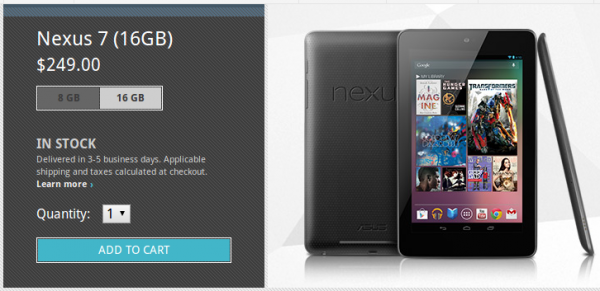
When the larger model of the Nexus 7 vanished from the Play store a week ago, it was generally assumed that demand outstripped supply. After all, the tablet has been insanely popular since its launch, and pretty much sold out everywhere. The fact that the 8GB model was still available in the store just suggested that people were more interested in physical memory than cloud storage.
But then the conspiracy theories began to kick in. There had been a lot of complaints about the 16GB model prior to its disappearance, with most focusing on screen issues, which led my colleague Joe Wilcox to question whether the model had been withdrawn for reasons other than just overwhelming popularity. His article certainly struck a nerve and generated some interesting comments, including further complaints about the device. Could he be right? Was there more to the story than Google was telling us?
Apparently not. From today the 16GB version is back on sale at Google Play, available to purchase in both the US and UK, and delivered as before in 3-5 business days. Those who preordered should start receiving their tablets very soon.
Quite how long the 16GB model will remain in stock is anyone’s guess, so if you’re thinking of getting one direct from Google, I suggest you hit the Add to Cart button sharpish.
-

Olympics fans asked not to tweet during events
Publié: juillet 30, 2012, 4:41pm CEST par Wayne Williams

London 2012 has been described as the first true “social media games”, with sports fans tweeting, texting and sending photos and videos live from events. But on Sunday it became clear that all this activity placed a strain on the networks when a deluge of messages sent by fans lining the streets to watch the men’s cycling road race prevented TV commentators from telling how far ahead the leaders were.
The problem, apparently with one so-far unidentified provider, stopped data from the cyclists’ GPS satellite navigation system getting through to the studios, leading to confusion. The International Olympic Committee (IOC) was forced to ask enthusiastic tweeters to limit the sending of non-vital messages -- at least until more network capacity could be arranged.
“Of course, if you want to send something, we are not going to say 'Don't, you can't do it', and we would certainly never prevent people" a spokesman says. "It's just -- if it's not an urgent, urgent one, please kind of take it easy."
Although there are more events set to take place on London’s roads, including the marathon, it’s unlikely the problem will be repeated. British Telecom, the official Olympic communications services provider, is reportedly offering four times as much network capacity as was available during the 2008 Beijing Games, and although no figures are available for other services, such as Vodafone, O2, or Orange, the IOC says it is working with all parties to ensure greater capacity across the networks to prevent this from becoming an issue again.
Photo Credit: London 2012 Olympic Games
-

Upgrade Windows 8 with an awesome Metro-themed Explorer
Publié: juillet 30, 2012, 3:51pm CEST par Wayne Williams
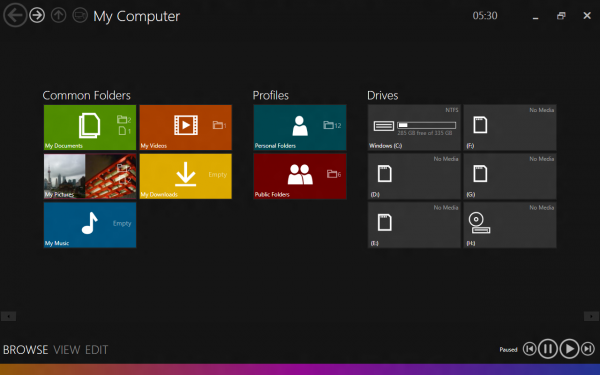
Whether you love or hate Metro (and BetaNews readers certainly seem to be divided on the topic), it’s an integral part of Windows 8 and something we’re all going to have to learn to get along with. Although I personally find using the interface with a keyboard and mouse a rather clumsy experience, I do appreciate Metro’s aesthetics and think it's a bit annoying (not to mention odd) that Microsoft hasn’t extended its design to Windows Explorer.
Unsurprisingly, I’m not alone in this viewpoint but while I’m happy to just complain about it Julien Manici decided to do something and has come up with a very early, but brilliant application called Immersive Explorer.
Although not a Metro app, it has the look of the tiled interface and offers desktop features like scroll-to-zoom and keyboard navigation (in time it will also fully support touch). It’s based on Win32/.NET/WPF (Windows Presentation Foundation) and makes use of graphical hardware acceleration to deliver fluid animations and transitions.
The application doesn’t replace Windows Explorer, but rather runs alongside it and so doesn’t need admin rights to install.
The interface displays common folders, profiles and drives and offers most of the Explorer features you’d expect, allowing you to open files, cut, copy, paste, and rename items, view properties and create new folders. It also includes a built-in photo viewer so you can view images without needing to open a separate application. Arrows on either side let you scroll through other photos in the folder.
Because it’s such an early version, certain features such as network discovery and Control Panel links are missing, but Manici plans to update the application regularly, and release new builds on a weekly basis.
-

Google admits breaching UK data privacy agreement
Publié: juillet 28, 2012, 2:49am CEST par Wayne Williams
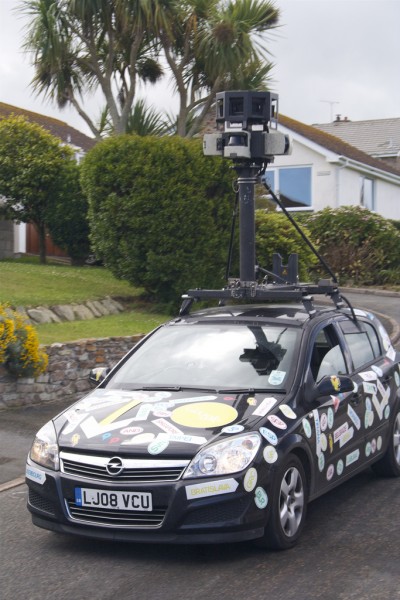 In May 2010, Google hit the headlines when it was revealed that street mapping cars had accidentally collected around 600GB of payload data from unsecured wireless networks around the globe.
In May 2010, Google hit the headlines when it was revealed that street mapping cars had accidentally collected around 600GB of payload data from unsecured wireless networks around the globe.The news caused a privacy storm and led to legal actions in numerous countries. In the United Kingdom, the Information Commissioner's Office (ICO) took a lenient approach, saying that while the activity “constituted a significant breach of the first principle of the Data Protection Act” it accepted Google’s explanation as to how collection had occurred. The agency was willing to take no action, provided the search giant deleted the data it had captured.
Google, facing detailed (and still ongoing) investigations elsewhere, was of course more than happy to comply. In December 2010, the company confirmed that all of the UK data had been wiped, and its deletion independently certified, bringing the matter to a close.
Or so we thought.
This morning, however, a letter from Google to the ICO revealed that the company was still in possession of a small portion of the payload data supposedly thought destroyed. An embarrassing admission not only for Google, but also for the ICO which received a ton of criticism from all directions for failing to properly investigate the matter in the first place.
While the obvious next step would be for Google to just delete the remaining data, the ICO has requested it be handed over to them for forensic analysis first, and hinted that some form of stricter action would come this time around. "We are in touch with other data protection authorities in the EU and elsewhere through the Article 29 Working Party and the GPEN network to coordinate the response to this development,” the agency says in a statement issued today.
“The ICO is clear that this information should never have been collected in the first place and the company’s failure to secure its deletion as promised is cause for concern,” it adds.
Quite what this latest development means for Google remains to be seen, but the ICO does have the power to fine the company up to £500,000 should it decide this clear breach of the agreement warrants it.
Photo Credit: Elias Gayles
-

Samsung error removes universal search from the Galaxy S III, not Apple's patent war
Publié: juillet 26, 2012, 11:59pm CEST par Wayne Williams
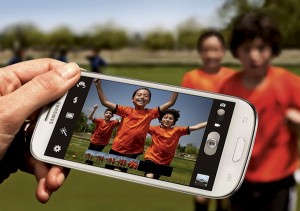 Now here’s an interesting thing. A couple of days ago Samsung disabled the Google local search function from the international version of its Galaxy S3 handset, preventing users from being able to search their phone’s apps and contacts. It was believed to have been done as a result of a patent dispute with Apple, and followed the search-on-device disabling update that hit Galaxy Nexuses in the US.
Now here’s an interesting thing. A couple of days ago Samsung disabled the Google local search function from the international version of its Galaxy S3 handset, preventing users from being able to search their phone’s apps and contacts. It was believed to have been done as a result of a patent dispute with Apple, and followed the search-on-device disabling update that hit Galaxy Nexuses in the US.Users were understandably up in arms because they weren’t told that installing the new stability update would remove the universal search feature, and probably a fair few of them felt compelled to join the boycott Apple movement as a result. (Fortunately I didn’t update my S3 so my opinion didn’t change. Not that it would have.)
But today, Samsung admitted that the removal of the search function from the international versions of the smartphone was completely accidental.
"The most recent software upgrade for the Galaxy S3 in the UK included the inadvertent removal of the universal search function", Samsung says in a fairly unapologetic statement. "Samsung will provide the correct software upgrade within the next few days".
Good news for British S3 owners, but really this is a pretty massive cock-up and one that might cause users to have second thoughts about installing any new updates in the future.
-

Transform Windows 8 into Mac OS X Mountain Lion
Publié: juillet 26, 2012, 11:06pm CEST par Wayne Williams
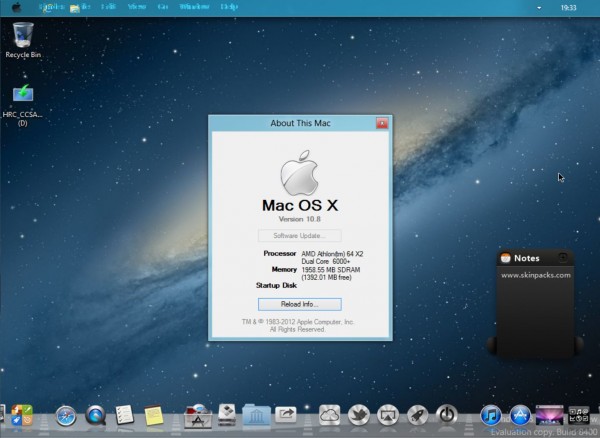
If you’re running Windows 8, but like the look of Apple’s new Mountain Lion OS, you can use a skin pack to assuage some of your UI envy, without dumping Metro in the process (which may be a good or bad thing, depending on how you feel about the new tiled interface).
The Mountain Lion Skin Pack for Windows 8 Consumer Preview was obviously designed for the earlier trial version of Windows 8 (the clue is in the name), but it works just as well in the release candidate. It won’t actually transform Windows into Mountain Lion, so you won’t get cool features like apps that match their iOS counterparts, cloud-based sync features or AirPlay mirroring, but it will at least give you a reasonable flavor of Mountain Lion’s aesthetics.
Setting it up is very straightforward. Just download the offline installer (there are X64 and X86 builds) and run it. Hit Next, accept the terms of the license agreement, and then uncheck every mention of Babylon, because no one in their right mind would want any of that junk on their system.
If there are any components you don’t want, you can remove them. For the best experience, though, you’ll want to include them all. Hit Install and it will go to work, installing the various components which make up the skin pack. These include Start8, RocketDock, and Winroll.
The setup process will take a little while to complete and when it does you’ll be prompted to reboot your computer. Log in and go to the desktop and the setup process will continue. Finderbar probably won’t load, or will look a bit odd, but you can download and install a fresh version or just remove it. You’ll also be prompted to update XWidget and it’s worth doing this although you’ll need to decline all the Babylon junk again. You’ll probably want to download the latest Mountain Lion wallpapers too.
Removing the skin pack is just a matter of selecting the uninstall option from the Skin Pack Menu that appears when you restart Windows. Alternatively, you can uninstall it through the Control Panel.
-

Free Wi-Fi comes to London in time for the Olympics
Publié: juillet 25, 2012, 8:19pm CEST par Wayne Williams

Virgin Media has already introduced free Wi-Fi to selected Underground stations -- with more to be added by the end of the year -- and now O2 is doing its bit to transform London into Europe’s largest free Wi-Fi zone with a roll out of hotspots at numerous landmarks across the city.
Free to access and use, irrespective of what network you’re on, the hotspots are already available at Oxford Street, Regent Street, Trafalgar Square, Leicester Square, Piccadilly Circus and Parliament Square, with Covent Garden to be added soon. The first time you connect you’ll need to register your details, but after that you’ll be automatically connected whenever you get within range of a signal. Assuming, of course, that O2 doesn't suffer another network disruption like the one it experienced recently.
Speaking of the O2 initiative, which will remain free even after the Olympics have finished, Boris Johnson, the Mayor of London, comments: "With millions of extra people coming to town for the Games, we want to ensure we showcase the capital as the best city in the world to work and visit, and the addition of free Wi-Fi to some of our most popular landmarks is crucial in helping to maintaining that reputation.”
But while free Wi-Fi is spreading throughout London -- Sky also offers hotspots at Overground stations -- the International Olympics Committee (IOC) has banned personal and private wireless access points from the games, going so far as to include them and 3G hubs on the list of items that will get you barred from any venue, alongside guns, knives, explosives, CS sprays, and toxic materials.
People will still be able to take smart devices like Android phones and iPads in with them though, and with the events drawing very large crowds it will be interesting to see how they intend to identify and stop people setting up their own hotspots should they choose to.
Photo Credit: London 2012 Olympic Games
-

Olympic tweets to power a daily light show on the London Eye
Publié: juillet 23, 2012, 11:01pm CEST par Wayne Williams

EDF Energy, the official electricity supplier of the London 2012 Olympics, will be using tweets sent during the games to gage the “Energy of the Nation”.
The power company will scour the raw Twitter feed looking for content, hash tags and links that relate to the Olympics (and which originate from within the United Kingdom), which it will then analyze using an algorithm designed by Professor Mike Thelwall, from the University of Wolverhampton, and Sosolimited a team of linguistic and data visualization experts from MIT. This algorithm will extract positive and negative words, phrases and emoticons from the tweets and generate an hourly percentage showing how positive (or otherwise) British people are feeling about the games.
The results from this will be projected, in the form of a pie chart, on to the London Eye as part of a nightly 24-minute light show, with every minute representing one hour of the day. The lightshow will also feature displays of the Union Jack using gold, silver and bronze lighting to reflect any Team GB wins.
The lightshow is being promoted by decathlon gold medalist Daley Thompson, who said, “Hosting the Games in London is an incredible once in a lifetime event and as a passionate supporter of the Games I want everyone to get behind the athletes and really show their support. We need to get behind our favorites to power them onto gold. EDF Energy of the Nation gives you a really easy way to join in, wherever you are and help drive a world first every night on the EDF Energy London Eye -- a light show powered by the nation’s tweets”.
To ensure tweets about London 2012 are considered, they should include the #Energy2012 hash tag.
Messages along the lines of “EDF Energy sucks #Energy2012 #Olympics” will probably be excluded.
Photo Credit: London 2012 Olympic Games
-

8 things Marissa Mayer needs to do at Yahoo NOW
Publié: juillet 23, 2012, 5:39pm CEST par Wayne Williams
 Pundits can't seem to glow enough about Yahoo's new CEO, who has been on the job for less than a week. Marissa Mayer is a Google darling flown the coop and swooped in just as Yahoo shocked shareholders with another quarter of disappointing performance.
Pundits can't seem to glow enough about Yahoo's new CEO, who has been on the job for less than a week. Marissa Mayer is a Google darling flown the coop and swooped in just as Yahoo shocked shareholders with another quarter of disappointing performance.It's get to work time, and we've got a to-do list for Mayer -- eight things she should do as soon as humanly possible.
1. Update social network pages. Her Facebook and Google+ profiles show her still employed by Google. Overlooking little details just looks slack. Her Twitter account is up to date at least. You would think that of all places, Google+ would be current.
2. Take control of Yahoo from the off. In a leaked memo to Yahoo staff Mayer says, "I need to develop a more informed perspective before making strategy or direction changes". While that’s only right and proper -- the last thing Yahoo needs is its new CEO engaging in any knee jerk reactions -- she needs to take strong control of the company, and not allow it to simply carry on as it has been.
It’s quite likely there’s a bit of a hidden subtext in her statement -- at seven months pregnant it does make sense for her to spend the first six months at Yahoo familiarizing herself with the situation there, and wait until she’s given birth and got used to having a baby in her life, before properly throwing herself into the job. Even with the best will in the world, becoming a CEO of a troubled Fortune 500 company and a new mom at the same time is a tough ask of anyone.
That said, the sooner the work begins in earnest at Yahoo, the more chance there will be something actually will happen. Leave it too long to make the desperately required direction changes and there’s a very real chance she will get sucked into working the Yahoo way, and be absolutely no different from the succession of ineffectual CEOs who preceded her.
3. Hire and fire. Like any big company, Yahoo will have its fair share of good and bad staff. Mayer needs to identify the best assets and get rid of the worst people pronto, regardless of how long they might have been there, and what greatness they may have achieved previously. Yahoo is a company trading on past glories, and that needs to stop.
She should hire some good people, too, and quickly. It doesn’t matter if they come from Google, or elsewhere. Her hiring has led to a buzz about Yahoo that hasn’t been there for years and that might just be enough to persuade some top talent to join her in the quest to make the company great again.
4. Launch, or better yet buy, a great new product. This is easier said than done, of course, but nothing will signal a new era at Yahoo better than a new launch. It will show that the company embraces the future, not simply clings to the past. A rival to Facebook would have been great, if her previous employer hadn’t already done that. She could consider buying Pinterest. After all, interest in the site has plateaued lately so it should be more affordable than a few months ago, and it could be made to play very nicely with Flickr.
5. Embrace mobile. Yahoo just doesn’t seem to have understood the importance of the mobile market in the same way as every other major tech company, and they are so far behind the game it’s embarrassing. Yahoo needs to find a way to make an impact, and quickly. Rolling out an improved app for Flickr and apps for its other properties is an essential move.
6. Make Flickr awesome again. Flickr was once the photo sharing site. Then Yahoo bought it and let it fester, and new startups like Instagram came along and took over. Mayer should put someone decent in control of Flickr and charge that person with making it great again. Whoever takes control needs to strip out unnecessary and unused features and get back to basics, but with a strong mobile component (an app with a lot less bugs, more features and proper iPad support for starters) and forge stronger links with other social networks.
7. Redesign the homepage. Because it’s seriously dated and fugly as hell. Besides she made her mark at Google designing the home page.
8. Get someone to fix all the broken links. Sheesh.
-

UK Judge tells Apple to run adverts Samsung doesn't copy iPad
Publié: juillet 18, 2012, 9:37pm CEST par Wayne Williams
 According to the Bloomsberg News Agency a UK judge has ordered Apple to publish a notice on its website and in various newspapers and magazines (the Financial Times, the Daily Mail, Guardian Mobile magazine, and T3) informing visitors and readers that Samsung did not copy the design of the iPad. The judge, Colin Birss, also stipulated that the notice on Apple’s website should remain there for a minimum of six months.
According to the Bloomsberg News Agency a UK judge has ordered Apple to publish a notice on its website and in various newspapers and magazines (the Financial Times, the Daily Mail, Guardian Mobile magazine, and T3) informing visitors and readers that Samsung did not copy the design of the iPad. The judge, Colin Birss, also stipulated that the notice on Apple’s website should remain there for a minimum of six months.The order follows Apple’s failed attempt to block sales of Samsung’s Galaxy Tab tablets in the United Kingdom and is apparently intended to correct any damaging impressions consumers may have been given about the South Korean company as a result of the litigation.
What makes the order most interesting: While Apple’s implication that Samsung copied may well have caused a few lost sales, and perhaps -- at the most -- put the tiniest of dents in Samsung's reputation, the greatest kicking to its name came directly from the judge himself when he declared that electronic giant's products are "not as cool" as Apple’s. Perhaps to even things up, he’ll pin his own pro-Samsung damage limitation notice on a tree in his garden. It’s only fair, surely.
Although the order did not feature in Judge Birss’s judgment published on July 9th, it's understood that it was discussed following the verdict. Richard Hacon, a lawyer representing Apple, told the court: "No company likes to refer to a rival on its website". Apple is currently considering taking its case to the court of appeal.
Running the notices would be a major blow for the Cupertino, Calif.–based company, and may well have some impact on its decision to sue other tech companies in the future. Apple is unusually image conscious, after all.
Photo Credit: Andrey Burmakin/Shutterstock
-

Texting is more popular than talking in United Kingdom
Publié: juillet 18, 2012, 5:10pm CEST par Wayne Williams
 According to Ofcom’s ninth annual Communications Market report, more people in the UK are texting on their mobiles than talking. The report, which stretches to 409 pages and covers TV & Audio-Visual, Radio & Audio, Internet & Web-Based Content and Telecoms & Networks, finds that 47 percent of people still make a daily voice call. However, 58 percent now regularly send texts, with the average user sending 200 SMS/MMS messages per month.
According to Ofcom’s ninth annual Communications Market report, more people in the UK are texting on their mobiles than talking. The report, which stretches to 409 pages and covers TV & Audio-Visual, Radio & Audio, Internet & Web-Based Content and Telecoms & Networks, finds that 47 percent of people still make a daily voice call. However, 58 percent now regularly send texts, with the average user sending 200 SMS/MMS messages per month. Unsurprisingly, it’s the 16-24 age group that leads the way here, with the growth in text messaging partly fuelled by mobile providers including generous or unlimited SMS allowances in their tariffs. Thirty-two percent of people also now regularly use social networks to stay in touch, while 26 percent use some form of instant messaging.
James Thickett, Ofcom's Director of Research, says: "Our research reveals that in just a few short years, new technology has fundamentally changed the way that we communicate. Talking face to face or on the phone are no longer the most common ways for us to interact with each other. In their place, newer forms of communications are emerging which don't require us to talk to each other especially among younger age groups. This trend is set to continue as technology advances and we move further into the digital age".
Other interesting snippets from the report show that 39 percent of adults now own a smartphone (up 12 percent from 2010), with 42 percent saying it’s their most important device for accessing the Internet. Fifty-one percent use it daily for email, while 42 percent access social network sites. The average time spent using mobile data services was 2.1 hours a month in 2011, 25 more minutes than in 2010, while the amount of data consumed doubled in the 18 months to January 2012.
The total number of UK fixed broadband connections passed 20 million in 2011, while mobile broadband connections (dongles and tablets) exceeded 5 million. That all means that by Q1 2012, 76 percent of UK homes had broadband.
The report also reveals that UK households now own, on average, three different types of internet-enabled device, including PCs, tablets, smartphones and game consoles, with 15 percent owning six or more such devices.
As you’d expect, ownership of tablets has grown considerably, up from 2 percent to 11 percent in the year from Q1 2011 to Q1 2012, and 10 percent of people now own some form of eBook reader.
Photo Credit: iofoto/Shutterstock
-

Eight awesome ways to improve Windows 8
Publié: juillet 18, 2012, 12:16am CEST par Wayne Williams
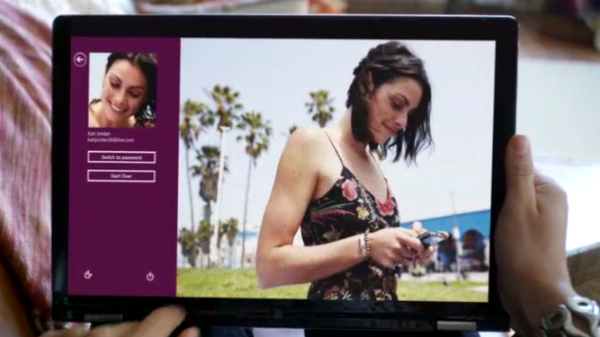
Like all previous versions of Microsoft’s operating system, Windows 8 is highly customizable, so if there’s something about it you don’t like -- something fairly minor that is, rather than the entire OS -- you might be able to change it by installing a third-party app, or making some registry tweaks.
There are a lot more than eight ways to improve Windows 8 of course, but these are some of the ones I’ve found the most useful.
1. Add a Start orb. After you’ve used Windows 8 for a while you soon get used to the absence of a Start button, which is exactly what Microsoft is hoping for. That doesn’t mean you won’t necessarily miss it though. If you think its absence is dumb, you can reintroduce it using Start8 from Stardock.
2. Bypass the Metro version of Internet Explorer. The Metro version of IE is pretty limited. Fortunately, you can link the Metro tile to the desktop version of the browser instead. Open the Search charm and find inetcpl.cpl. Click the Programs tab and under “Choose how you open links” select “Always in Internet Explorer on the desktop”. Also check “Open Internet Explorer tiles on the desktop” and click OK.
3. Improve window responsiveness. When you minimize or maximize a window, an animation plays. This looks nice, but also adds an unnecessary delay. You can make Windows feel much snappier, by disabling this feature. Go to Search and type SystemPropertiesPerformance. Hit enter. Find “Animate windows when minimizing and maximizing” in the Visual Effects tab and uncheck it. Click OK.
4. Activate God Mode. Like Windows 7, Windows 8 has a hidden “God Mode” that displays all of the admin tools and control options in a single screen. To activate it, right-click on the desktop and select New, Folder. Highlight this folder and press F2. Call the folder: GodMode.{ED7BA470-8E54-465E-825C-99712043E01C} and hit enter. Double-click the icon to view the contents.
5. Change the number of apps. Not a big fan of scrolling left and right? A simple registry tweak will let you pack in more tiles on a single Metro screen. Search for and run “regedit”. Navigate to HKEY_CURRENT_USER\Software\Microsoft\Windows\CurrentVersion\ImmersiveShell\Grid and find Layout_MaximumRowCount. Right-click it (if it’s not there you’ll need to create a new DWORD and call it that), select Modify and enter the number of rows to display. Quit the editor and restart your computer. It’s worth noting that you’re limited to between 1 and 6 rows, with the maximum number of rows dependent on your monitor’s resolution.
6. Launch apps and websites from the taskbar. If you prefer typing to clicking, there’s a simple (and very old) trick you can use to launch apps directly from the taskbar. Right-click the taskbar, select Toolbars and click Address. You can now launch apps by typing in their short name (“calc” for example) and websites by typing in the URL. You can hide the address toolbar label by right-clicking the taskbar, unlocking it, and then right-clicking on “Address” and unchecking “Show title”.
7. Bypass Metro. Install the latest version of Start8 and you can have Windows 8 go straight to the Windows desktop on login. If you’d rather not install the program, there is another trick you can use that doesn’t require any third-party tools or playing around with the registry.
Drag the desktop tile in Metro to the top left-hand corner. Restart Windows and when prompted to enter your password, type it in and hold down enter. You’ll go straight to the desktop. Should you forget to hold down the key, tapping enter again will open the desktop from the Start screen.
8. Improve battery usage. If you’re running Windows 8 on a laptop and it seems to be draining your battery at a ridiculous rate, you can try fixing the problem using a built-in wizard. Open the Control Panel, and search for “Troubleshooting”. Under System and Security you’ll see a link to “Improve power usage”. Click this and the Power troubleshooter will open. Click Next and it will go to work, and hopefully fix any battery problems you might be experiencing.
If you like this article, and would like to see more tips on the subject just let me know in the comments.
-

Three things you REALLY need to know about iPad mini
Publié: juillet 10, 2012, 4:46am CEST par Wayne Williams

The Apple iPad is the best-selling tablet by quite some margin, but with increasing competition from the likes of Google and Microsoft, its dominance could be under threat. Although the company could (and likely will) make some minor improvements to the iPad at some point -- making it thinner, boosting the camera, and finding a way to reduce its core temperature, for example -- it needs to come up with new variations if it wants to stay on top.
That means going large and producing a ‘MacPad’, which would essentially be a touchscreen, keyboard-less version of the Macbook Air (bringing it into direct competition with Microsoft Surface), or going small, and finally introducing the much rumored iPad mini.
Tech journos have been talking about an iPad mini for close to two years now, with rumors really gaining pace over the past few weeks (I wouldn’t be surprised if Apple itself wasn’t the source of some of the stories, seeing how they’ve surfaced so close to Google’s announcement of the Nexus 7). With so many people talking about it, and with so many specs floating about, surely it has to be a reality, right? Well, let’s look at what we know.
1. What will the iPad mini be like?
Everyone agrees the new iPad will be a 7-inch device, like the Kindle Fire or Nexus 7, with a 7.85-in screen and offering a resolution of 1024 x 768. The reduced resolution will allow existing iPad apps to be scaled down without problems, and offer a point of difference between the two tablets. It will likely be a lot thinner than the existing iPad, probably more like the iPod touch 4G, and could well look like a scaled up iPod Nano, again to differentiate it. Expect it to be available in smaller capacities, starting at 8GB, and be powered by a decent processor, like the dual-core A5X SoC.
2. When will I be able to buy one?
Well, assuming it even exists, of course, it’s likely to be released in the United States and United Kingdom this September, in time for Christmas. While it could be priced to compete directly with the Nexus 7, I’d expect it to retail for more. Even with reduced specs, Apple wouldn’t want to go too low. The company has a reputation for producing quality products so would want to position it as “affordable” rather than “cheap”.
It’s unlikely to be called the iPad mini when launched either. Expect it to have a more Apple-sounding name, like the iPad play, iPad go or even iPad air. Some pundits have suggested it could be called the iPad nano, but that would be a better name for a retooled iPod touch.
3. So does it even exist?
Former Apple CEO Steve Jobs dismissed the idea of a smaller iPad in 2010: “One naturally thinks that a 7-inch screen would offer 70 per cent of the benefits of a 10in screen. Unfortunately, this is far from the truth. … The reason we [won't] make a 7-inch tablet isn’t because we don’t want to hit [a lower] price point, it’s because we think the screen is too small to express the software”. He also said, far more scathingly, “The 7-inch tablets are tweeners: too big to compete with a smartphone, and too small to compete with an iPad".
But a lot has happened to the market in two years, and with a new CEO at the helm, it’s almost inevitable that Apple will bring out a 7-inch tablet, and soon. Not to compete, but to ensure it stays far ahead of its rivals. The fear that a smaller iPad could cannibalize the sales of the full-sized model are rather irrelevant now. Apple would rather eat into its own market share than have Google, Samsung or Amazon do it.
So what do you think? Can we expect to see a 7in iPad soon? And, if so, what features would you like it to have?
-

New Android malware threat: over 100,000 devices infected so far
Publié: juillet 9, 2012, 6:42pm CEST par Wayne Williams
 Malware on Android devices is a real and growing threat, and one that is only likely to worsen. The latest Trojan to be found in the wild is a particularly nasty piece of coding named MMarketPay.A by TrustGo, the mobile security company that discovered it. Believed to have infected more than 100,000 smartphones in China, the Trojan downloads paid apps and videos from Mobile Market (M-Market), China Mobile’s official app store, without the user’s knowledge, resulting in some pretty hefty bills.
Malware on Android devices is a real and growing threat, and one that is only likely to worsen. The latest Trojan to be found in the wild is a particularly nasty piece of coding named MMarketPay.A by TrustGo, the mobile security company that discovered it. Believed to have infected more than 100,000 smartphones in China, the Trojan downloads paid apps and videos from Mobile Market (M-Market), China Mobile’s official app store, without the user’s knowledge, resulting in some pretty hefty bills.The malware is picked up by downloading infected apps from one of nine app stores (nDuoa, GFan, AppChina, LIQU, ANFONE, Soft.3g.cn, TalkPhone, 159.com and AZ4SD) and once installed on a device, it bypasses M-Market’s SMS security step, and begins placing orders and downloading content.
While the chances of it actually spreading beyond China are slim -- unless you choose to download your apps from Chinese stores -- it’s another example of how malware creators are targeting Google’s mobile OS, and another reason why you should avoid downloading apps from any other sources besides Google Play.
Because Apple’s ecosystem is more locked down, and officially prohibits side-loading apps, it’s far less likely you’ll pick up an infected app on an iOS device, but not impossible. Apple and Google both removed the Russian-language Find and Call app from their respective stores last week, following a tip-off from Kaspersky Labs that it was stealing users’ phone books and spamming their contacts.
How worried are you about the growing threat of malware on mobile devices?
Photo Credit: Albert Ziganshin/Shutterstock
-

British Airways will Google passengers ahead of flights
Publié: juillet 7, 2012, 4:03pm CEST par Wayne Williams
 British Airways faces criticism after unveiling plans to look up frequent fliers on Google as part of a customer service programme called "Know Me".
British Airways faces criticism after unveiling plans to look up frequent fliers on Google as part of a customer service programme called "Know Me".Two-thousand iPad wielding airline staff will be given access to the data, which will include travel history and, most interestingly of all, photos pulled from Google Images. BA says the idea of the initiative is to be able to offer a more personal service -- the photos will allow staff to greet recognized passengers with a smile when they arrive at the terminal or plane.
Or, as Jo Boswell, head of customer analysis at BA, puts it: "We’re essentially trying to recreate the feeling of recognition you get in a favourite restaurant when you’re welcomed there, but in our case it will be delivered by thousands of staff to millions of customers. This is just the start — the system has a myriad of possibilities for the future".
The airline says it plans to use Know Me to recognize 4,500 passengers a day by the end of the year.
So what do you think of the idea? Is it just a way of offering friendly customer service, or an invasion of privacy? Leave your comments below.
Photo Credit: British Airways
-

Could Apple be planning its own answer to Google Glass?
Publié: juillet 6, 2012, 8:13pm CEST par Wayne Williams

Apple, like all big tech companies, files patents for lots of things. Some are used in products it plans to make, but others are just ideas that may or may not ever come to fruition. For this reason you can never read too much into new patents, but that doesn’t mean we shouldn’t sit up and pay at least some attention to the news that Apple has been granted a broad patent for a head-mounted wearable computing device that sounds rather similar to Google Glass.
While the news might suggest that Apple has simply ripped off Google’s innovation, the truth is the patent was actually filed in October 2006 but just granted now.
Quite what this news means is open to debate. It could mean that Google will find itself embroiled in another patent war when Glass arrives (Google’s patent is quite specific to its product, while Apple’s is a lot broader), or it could mean Apple is planning its own rival head-mounted device – iGlasses anyone?
Feel free to speculate in the comments below.
Photo Credit: Google
-

Android botnets? Not so, says Google
Publié: juillet 6, 2012, 5:29pm CEST par Wayne Williams
 A couple of days ago Microsoft researcher Terry Zink claimed he’d uncovered evidence of Android phones being used as part of a botnet to send spam from Yahoo Mail servers. In his blog post on July 3rd he reported that the spam, which included "androidMobile" in the message header, and "Sent from Yahoo! Mail on Android" at the bottom of the emails, was being sent from devices located in Chile, Indonesia, Lebanon, Oman, Philippines, Russia, Saudi Arabia, Thailand, Ukraine and Venezuela. He then went on to speculate that users of the infected phones might have installed Trojanized pirated versions of legitimate apps, and become infected that way.
A couple of days ago Microsoft researcher Terry Zink claimed he’d uncovered evidence of Android phones being used as part of a botnet to send spam from Yahoo Mail servers. In his blog post on July 3rd he reported that the spam, which included "androidMobile" in the message header, and "Sent from Yahoo! Mail on Android" at the bottom of the emails, was being sent from devices located in Chile, Indonesia, Lebanon, Oman, Philippines, Russia, Saudi Arabia, Thailand, Ukraine and Venezuela. He then went on to speculate that users of the infected phones might have installed Trojanized pirated versions of legitimate apps, and become infected that way.Security experts Sophos, agreed with his findings after running investigations of its own on the spam messages, but didn’t actually find or test any of the supposed malware itself. Google has since denied that any Android devices have been compromised in this way, stating there was no evidence to prove Zink’s claim, and that the junk messages had just been formatted to look as if they originated on Android handsets.
"Our analysis suggests that spammers are using infected computers and a fake mobile signature to try to bypass anti-spam mechanisms in the email platform they're using," a Google spokesperson says in a statement.
In a follow up blog post Zink agrees that the headers could have been spoofed, but still feels there’s every chance that the messages were sent from compromised devices.
At the moment there’s no way to know for certain, but as Android malware is definitely on the rise, it’s not beyond the realms of possibility.
Photo Credit: Albert Ziganshin/Shutterstock
-

Windows 8 will flop
Publié: juillet 6, 2012, 2:19am CEST par Wayne Williams
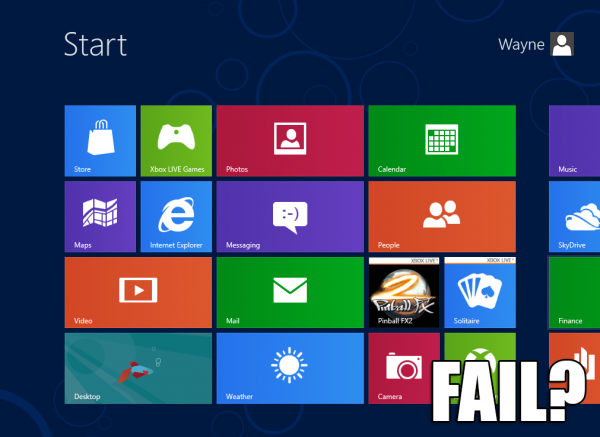
A technology journalist friend of mine often makes sweeping statements regarding how well he thinks a new program or piece of hardware will fare, and he’s usually completely wrong. When Ubuntu first arrived, he declared it would kill off Windows and render Microsoft an aging OS irrelevance. When Apple launched the iPad he told everyone who cared to listen that it would be a total failure because no one would want one.
I’m far less prone to making such proclamations, but I think I’m on reasonably safe ground when I say Windows 8 is going to be a dud. No version of Windows will ever be a total failure. Even Vista, which is regarded as one of Microsoft’s least successful operating systems, sold reasonably well, and I’m sure as soon as Windows 8 is released we’ll hear a lot of statistics coming out of Microsoft about how it’s the fastest-selling OS since Windows Whatever. But they’ll be statistics that we’ll have to take with a fair amount of salt.
Touch the Future
Microsoft has long believed that touchscreen tablets are the way forward. It came up with a set of specifications in 2001 for pen-enabled touch devices running a special Tablet PC Edition of Windows XP. A year later, the first such OEM devices arrived, and no one bought them. Microsoft baked touchscreen support into Vista and Windows 7, but still no one was that interested.
It was only when Apple released the iPad in 2010 that tablets actually took off.
With its vision of the future finally becoming a reality (thanks entirely to its far cooler rival), Microsoft has gone all out to embrace touch, creating an operating system designed specifically for it, but has thrown its core user base under the bus in the process.
Windows 8 on non-touch screen devices is, in a word, terrible. The old Start menu might have been a bit of a tired concept, but it worked well and we all knew how to use it. With Metro, you’re hunting for apps, and having to learn a whole new, and rather clumsy, way of working. The OS makes using Windows with a keyboard and mouse a harder and generally more frustrating experience. The Metro interface looks nice and modern and if that’s all there was to Windows 8 we’d probably accept it. But it’s been bolted on top of the Desktop, and that really doesn’t work. It’s just an odd compromise.
Yes, you can tweak the OS to disable or hide Metro, and clearly there will be lots of freeware tools that will let you completely remove it once Windows 8 has been released. But, really, why would you bother to upgrade to the new OS if all you’re going to do is roll it back to Windows 7.5 at the earliest opportunity? Surely it’s better, and easier, to stick with the OS you already own, and know how to use?
Don't forget the Past
The one thing that might save Windows 8 on the PC is price. Upgrading to the new OS will cost just $39.99 and this offer will even extend to XP users. It’s a move that some people will say is designed to compete with Apple’s pricing, but it just smacks a little bit of desperation to me.
Of course Microsoft is gambling on Windows 8 being a big hit on tablets, which is where the OS sits far more comfortably. But the problem here is, aside from Surface and a bunch of OEM offerings you’ll be able to comfortably ignore, the sort of tablets we’re using, and will continue to use, aren’t the sort of tablets designed to replace PCs and Macs. The iPad, Kindle Fire, Nexus 7, they’re all casual use tablets that are perfect for everyday tasks like browsing the web, accessing email, watching video, reading books and playing games. I really can’t see that changing. Apple will probably bring out an iPad mini before it rolls out a MacPad.
The other reason the iPad and Android tablets succeed is because people are familiar with the OS they run, because they’ve used it on their phones. Microsoft’s phones are never going to be as popular, and if users don’t enjoy Windows 8 on their PCs, they aren’t going to choose Windows 8 on a tablet.
I like Microsoft as a company, and think it produces some great products. But sometimes it makes bad choices, and I believe, unfortunately, Windows 8 will prove to be one of them.
As always, leave your comments below. I’d be interested to know what your thoughts are.
-

If this were 2016, you'd be reading this story on a tablet
Publié: juillet 3, 2012, 9:39pm CEST par Wayne Williams
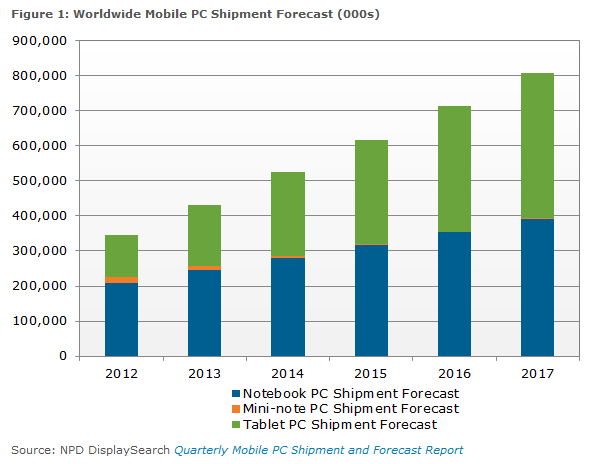
Tablets are the hottest computing devices right now, and thanks to the likes of Google Nexus 7 and Microsoft Surface, they’re only going to gain in popularity. In fact, the latest NPD DisplaySearch Quarterly Mobile PC Shipment and Forecast Report has them on target to surpass notebook shipments by 2016. Not too shabby for a platform that didn’t even really exist before the original iPad launched in April 2010.
The total number of mobile PC shipments for 2012 is estimated at 347 million units, with tablets accounting for around 121 million of those. Notebooks are forecast at 208 million units, with mini-note PCs (netbooks) making up the remaining 18 million shipments.
NPD DisplaySearch sees total mobile PC shipments rising to an impressive 809 million units by 2017, with tablets accounting for 416 million units of that, compared to notebook shipments which are expected to grow to 393 million.
Most of the growth for tablet devices is likely to come from adoption in mature markets (including North America, Japan and Western Europe), because, as Richard Shim, senior analyst at NPD DisplaySearch notes, this is where new entrants are tending to launch their initial products. “Services and infrastructure needed to create compelling new usage models are often better established in mature markets,” he also observes. These mature markets are expected to account for 66% of shipments in 2012, and remain steady at around 60% for the next five years.
NPD DisplaySearch’s prediction is based on the natural assumption that tablet PCs are going to evolve and become more powerful, narrowing the performance gap between them and traditional mobile computing devices, while remaining as convenient and affordable as they currently are.
The figures are certainly encouraging, and show, despite Apple’s present dominance, that there’s still plenty of market share for Google, Microsoft, and others to compete for -- which is good news for them, and even better news for consumers like us.
-

VLC arrives on Android -- but may kill your device or end the world
Publié: juillet 2, 2012, 4:26pm CEST par Wayne Williams
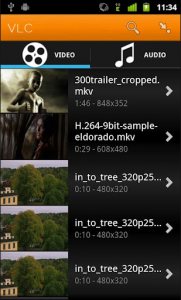 VideoLAN’s VLC, the hugely popular open source cross-platform media player, has finally been released for Android. Before you get too excited though, this is a beta version ported from iOS, so will only run on devices with an ARMv7 CPU and NEON. It has a rather basic UI and some performance issues too. In fact, according to VLC, "It might kill your kitten, destroy your house and start the Mayan apocalypse. Use it at your own risk".
VideoLAN’s VLC, the hugely popular open source cross-platform media player, has finally been released for Android. Before you get too excited though, this is a beta version ported from iOS, so will only run on devices with an ARMv7 CPU and NEON. It has a rather basic UI and some performance issues too. In fact, according to VLC, "It might kill your kitten, destroy your house and start the Mayan apocalypse. Use it at your own risk".If the limitations don’t put you off, and you have no qualms about potentially initiating the end of the world, the app offers the ability to play most local audio and video files (stored in its media library or any folders on your device), as well as network streams. It supports auto-rotation, aspect ratio adjustments, volume gestures, multi-track audio and subtitles.
If you do decide to give it a try, let us know how you get on in the comments below.
-

Project Now iOS app generates a soundtrack for your life -- Kind of
Publié: juin 29, 2012, 3:16pm CEST par Wayne Williams
Reality Jockey is responsible for some of iOS’s more interesting audio apps, including RjDj, Inception and Dimensions. The London-based developer’s latest offering, Project Now, is an ambitious music app that aims to choose the perfect music for every situation you find yourself in. For example, if you’re just relaxing at home, it will play a selection of suitable tunes from your music collection. Go to work and it will switch to something more fitting for the business environment. Visit the gym, and you’ll hear music to work out to. Cleverly it also mixes in external sounds from your microphone, so you can still hear the world around you when you’re out cycling, or in the office.
When you first run the app it will import your music, which will take a while to complete. After then it will attempt to assess your situation, based on the current day, time, location and sounds around you, and find music to match. It can identify 21 different circumstances, including calm, active, asleep, snowy, night out and full moon. Quite why you’d want to listen to different music when the moon is full I’m not sure.
If you don’t think a song matches the mood you can tag it as #fail. Perfect matches can be #win. (At least in theory -- after a full day it’s still importing my music so won’t allow this). You can also pause and skip tracks, and view the ranking of each situation, and access personal music charts.
Although it’s pretty good at detecting situations, the app is far from perfect. It’s slow, often only plays snippets of songs, and continued use of GPS zaps the battery life so quickly you wonder why "Charging Device" isn’t one of the situations on offer.
Most annoyingly of all it requires you to link it to Facebook or Twitter before you can access the settings, which sucks.
Still, it has great potential, and hopefully future updates will fix some of the issues, and add further possible situations. There are no plans for an Android version yet, but Reality Jockey hasn’t totally ruled out the idea.
-

Google+ celebrates 1st birthday with Events and History
Publié: juin 28, 2012, 10:57pm CEST par Wayne Williams
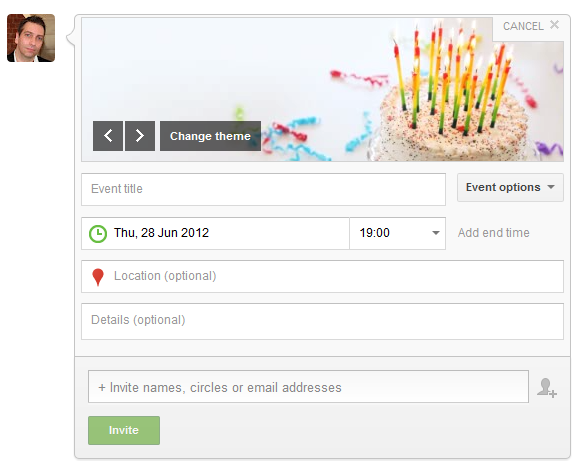
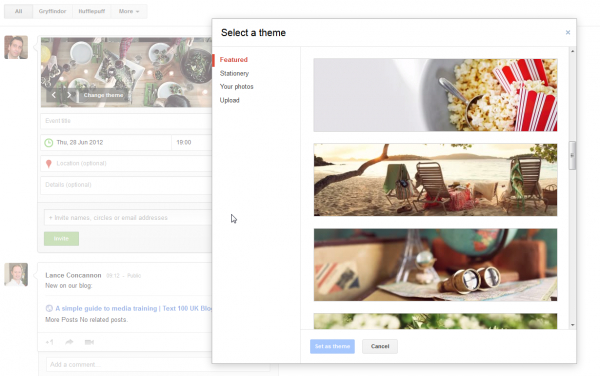
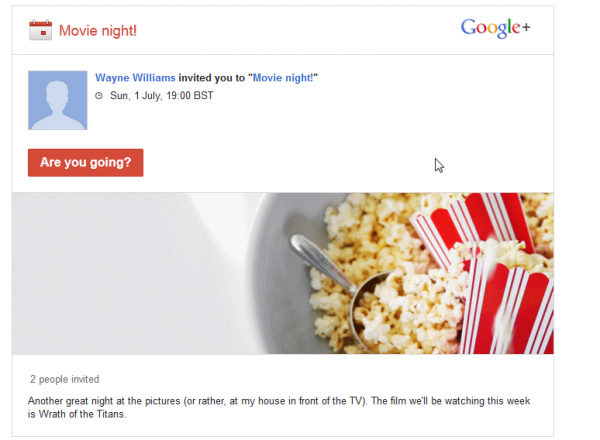
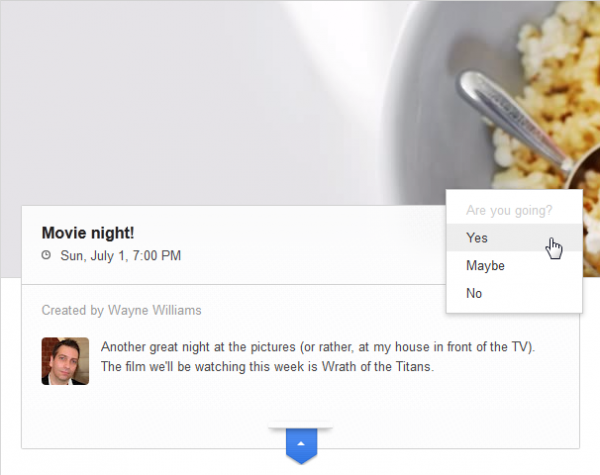
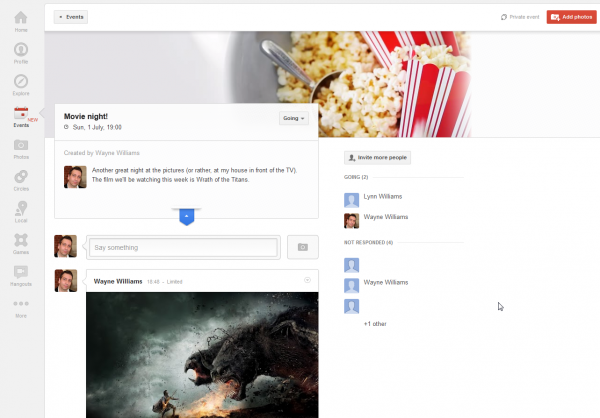
One year ago today, Google moved onto Facebook's turf and stunned techdom in the process. How much has changed? Google+ now has a total of 250 million users. Of that figure, Google says 150 million people use the service at least monthly, and 50 percent of those active users do so daily. That doesn’t actually mean 75 million people go to Google+ every day though -- it just means that they have some sort of interaction with Google’s social features, or more likely, click +1 buttons.
Despite its reasonably impressive growth, Google+ still lags a long, long way behind Facebook, which has over 900 million users. Google knows it’s got its work cut out to persuade ordinary Facebook users to give Plus a try. Especially, as in most cases, their friends won’t be using it. To help encourage sampling and indeed regular usage, Google has consistently added more and more features to its site, and beefing up its mobile offerings. At Google I/O it announced a new app for Android smartphones with new profiles, a ribbon bar, and new notifications, as well as native tablet apps for both Android and iPad designed specifically for the larger screen sizes. The Android version is already available, with the iPad edition coming "soon".
Google+ Events
At Google I/O the company also introduced a brand new feature called Events, which basically offers integration with Google Calendar, allowing you to send invites to upcoming occasions, manage attendance, share photos and more.
Using the new feature is very straightforward. Just give your event a title, set the date and time, add an optional location, then fill in the details and invite some people. You can invite anyone, they don’t need to be Google+ users, although any who are, will have access to additional features, like live photo sharing.
You can change the theme of the invitations to suit the type of occasion. Clicking the left and right arrows, will let you move through 28 "cinemagraphic" themes (subtly animated images), or you can click the Change Theme button and select some of the featured choices, choose some stationary, or add one of your own photos. You can pick an image available on Google+ or Picasa, or upload something from your computer.
People who receive an invite will be able to confirm whether they’ll be coming or not, and will be given the option of checking their availability on Google Calendar before committing themselves. If your friends don’t check into Google+ very often, it doesn’t matter as events are automatically added to Google Calendar as well.
Upcoming occasions are all accessed through the new Events section and selecting something will show you who’s attending, and any comments they’ve made about it.
Best of all, people will be able to add photos, before, during or after the event, by linking or uploading them, or using the Google+ app on their phones. All of the photos will appear under the Event information, and if your friends have enabled the instant upload feature on the Google+ app (Party Mode), the photos will appear as they are snapped. Which is very, very cool, and could be a major draw.
Google+ History
Another new feature that’s being worked on is Google+ History. The API (currently available as an early preview will allow developers to add a few lines of code to their website or app that will privately save a user’s actions in his or her Google+ History. For example, if someone listens to a song in a media player, that information will be saved, but not shared on the social network. If the user wants to share it, they’ll be able to do so, but it won’t be public by default. Although it’s very early days, this could have some great uses, such as allowing users to republish some, but not all of their tweets, for example.
As with all previous updates, it’s unlikely these new features will persuade huge numbers of Facebook users to migrate over, but I can see the Party Mode in particular, proving very popular.
What’s your opinion on Google+? Do you currently use it? Do you plan to use it? And what do you think of the new features?
-

iPhone changed phones forever
Publié: juin 27, 2012, 3:21pm CEST par Wayne Williams
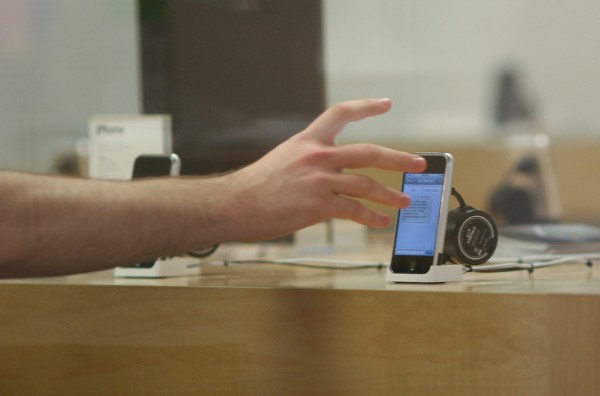
First in a series. Editor's note: To commemorate iPhone's fifth-anniversary, we present several stories looking at its debut and colorful history -- so far.
On January 9, 2007, Steve Jobs introduced the iPhone at the Macworld Conference and Expo in San Francisco. It was the usual quality presentation from Apple’s boss, with some great moments of humour. Our first glimpse of the phone was in fact actually a mock-up of an iPod with a rotary dial in place of the usual click wheel. The audience clapped and hooted. Jobs then went on to show the real device, and to be honest it was pretty mind-blowing.
Here was a phone that looked nothing like a phone. It looked nothing like an iPod, for that matter either. It was pretty much all screen, controlled by touch using your finger -- or fingers, thanks to the power of multi-touch -- and was, according to Jobs, powered by OS X. The device could tell if you were holding it portrait or landscape, and knew when you were holding it up to your ear, and so prevent you prematurely ending a call with the side of your face. It came with a 620MHz processor, 128MB of memory and a 2MP camera. It was a magical device. This was the future, being shown right here. A device to be coveted by all.
But I didn’t want one.
Perhaps it was because I had a regular dumb mobile, without a built-in qwerty keyboard or any great bells and whistles, that I just couldn’t really see the benefit. I was happy enough using predictive text to send lightning fast SMS messages. The idea of a virtual touchscreen keyboard just didn’t appeal. Mind you, at that point my experience of touchscreens was mostly limited to Personal Information Managers controlled with a stylus, and kiosk computers with unresponsive screens, that often did nothing when touched, or moved an on-screen cursor to somewhere only vaguely near where you were frustratingly prodding.
The first iPhone went on sale in the USA on June 29, 2007. Exclusively on AT&T it was initially available in 4GB and 8GB models for $499 and $599 respectively. Would-be purchasers queued right around the block outside the Apple stores. I wasn’t one of them. Partly because I wasn’t interested, and partly because I live in the United Kingdom and the iPhone didn’t come out here until four months later, by which time the 4GB model had been discontinued stateside and the price of the 8GB model cut by a third to $399.
Out of curiosity, and because I was in the market for a new phone, I went into an Apple store in December 2007, and tried out the iPhone for myself. It was light, thin, and surprisingly responsive. I played with it some more and liked it. This was a great piece of kit. A quality phone, crossed with an iPod, that I could use to browse the web comfortably. I remember holding the iPhone in my hand, and being really, really impressed.
So impressed, a few hours later I went home the proud new owner of a BlackBerry 8800.
Next Generation
In February 2008, the 16GB iPhone was announced and four months later Jobs introduced us to the iPhone 3G. This was the iPhone for the 3G network and came with GPS. Available in 8GB and 16GB models, it was thinner, and ran iOS 2.0. Most excitingly of all, users could now download or buy third-party apps from developers like Google through the new App Store. I liked what I saw. I liked it a lot. But I liked my CrackBerry more.
The iPhone 3GS released on June 19, 2009. This new model came in 8GB, 16GB and 32GB flavors, was faster, thanks to an 833MHz ARM Cortex-A8 processor and 256MB of memory, and had a much better 3MP camera that, unlike its predecessors, could record video (VGA). It offered voice control too.
I wavered, but still preferred my phone. We were in it for the long haul and I couldn’t imagine being without it.
Then the BlackBerry’s charging port broke.
So I finally relented and purchased an all new, shiny iPhone 3GS, and fell instantly and deeply in love with it.
My love affair with the 3GS didn’t last very long though. The iPhone 4 released on June 24, 2010, bringing with it the Retina Display, a super-speedy 1Ghz Apple A4 processor (making it twice as fast as my new phone, and four times as fast as the original model) and 512MB of memory. It was slimmer, had a glass body, and a new and improved 5MP camera capable of recording 720p HD video. It had a front camera too, so users could FaceTime (Apple lingo for video chatting). It also had a new feature called "Death Grip", which caused calls to drop when you held the phone in a certain way. But Jobs had me at "Retina Display" so I upgraded immediately.
Getting Siri-ous
On October 4, 2011, with everyone hoping for the iPhone 5, the 4S was announced by new Apple boss Tim Cook. This had various improvements, including 1080p video recording, but the most notable new inclusion was Siri -- a magical personal assistant who could read messages aloud and send dictated replies, tell you the weather, convert measurements, schedule events, and more -- if you were lucky. The UK got Siri’s dumb brother (also called Siri) who was rubbish, couldn’t understand regional accents, and had no idea about local businesses. Thankfully he soon got smarter.
There didn’t really seem enough in this new version to justify upgrading so I decided to stick with my iPhone 4 for a little longer. That little longer turned out to be a month. Juggling my phone while walking I dropped it and the screen cracked. It was like fate. I had to get a new phone and there was only one possible choice for me.
So I bought a Samsung Galaxy S III.
I have no regrets about no longer having an iPhone, but I do sometimes miss the way it works and feels, the ease of the interface and the sheer volume of brilliant apps. I’m an Android convert, but I still love iOS. Which is why I have an iPod touch and an iPad to ease the cravings.
The iPhone changed phones forever, and brought us so many good things – multi-touch, video calling, proper web browsing, and of course apps. Without the iPhone we wouldn’t have Angry Birds.
Five years on the iPhone is sleeker, faster and more powerful, but it’s still essentially the same device, with the same interface. The first iPhone was a revolution. Every subsequent update has been an evolution, and that’s how it should be.
At some point in the near future Apple will announce the iPhone 5. It has some serious competition now from Android, and Samsung in particular, so is going to need to really step things up. The new device might have a 3D GUI -- this is just one of the many patents Apple’s submitted -- or it might not. It might have a ton of innovations, or it might not. It will likely be taller with a bigger screen, have a faster processor (maybe an A5X, or even a quad-core A6 chip) and offer HDR video recording. But whether that will be enough to tempt me back, only time will tell...
What’s your recollection of the iPhone? Did you buy the first model, or come to it later on? Or did you choose to go down another route, like Blackberry or Android, and if so why? I’d love to hear your stories in the comments below. I’d also be interested to know what you think the next generations of iPhone will be like.
Photo Credit: Joe Wilcox
-

Microsoft’s Surface pricing dilemma is two opportunities waiting to be missed
Publié: juin 25, 2012, 8:10pm CEST par Wayne Williams

In an article that appeared earlier today on BetaNews, Robert Cringely talks about how Microsoft can compete with Apple on pricing but -- due to supply and manufacturing issues -- won’t be able to undercut its rival. It’s an interesting observation, and one that’s based on sound thinking.
But Surface is a curious beast. The iPad is, to all intents and purposes, a scaled-up Smartphone. Microsoft’s tablet (or tablets, rather) is a touch-screen PC. It runs Windows 8, and Office, and applications like Photoshop.
PCs usually retail for a lot less than Macs (not just, as Robert would have us believe, because they are inferior, but because Apple can charge what they like and the fanboys will still lap it up) and we’re used to that. A slim, touch-screen device, fashioned from Mithril (or whatever) that can run proper programs, has a keyboard that’s also a case (genius!), and comes direct from Microsoft, could be positioned as superior to the iPad in every way. Surface is not just for checking email, browsing the web or updating Facebook. You can do substantial things with it -- like office work, or video editing. You can use it to write a novel, or pilot a rocket to Mars!
If Microsoft does what it should, and positions Surface as superior to the iPad, and all of the other casual-use tablets out there at the moment, it could easily slap a superior price tag on it.
Apple premium-prices its products because it can. Microsoft would love to be in that position, too. Surface would be the one product that would give it that chance.
Microsoft’s Problem
But, here’s the rub. Microsoft really needs Surface to succeed. I mean, really, really, needs it to succeed. Because Surface runs Windows 8, properly. Surface runs Windows how it’s been designed to run. Windows 8 has, after all, been built with touchscreen devices in mind.
People talk about Windows 8 as being an operating system, but it’s more than that. It’s a strategy. Microsoft wants you to use its OS on every device you own. It wants you to see its logo when you fire up your desktop PC or laptop, when you turn on your Windows Phone 8, and when you use a tablet.
On the PC, controlled using a keyboard and mouse, Windows 8 is clumsy and awkward. Joe Wilcox sums up the experience perfectly here, and for that reason, the new OS could well flop. Windows XP die-hards are unlikely to want to switch to it and Windows 7 users will be similarly reluctant.
Windows Phone 8 will mostly be snapped up by, well, who knows? Most of us will be sticking with our iPhones or Androids.
Which leaves Windows 8-powered tablets to save the day. And by tablets, I mean Surface. So Microsoft could, if it was feeling very brave, go low with the price. Take a big, big hit and hope for the best. A quality device like Surface, sold at an incredibly attractive price, would absolutely fly off the shelves. In a stroke Microsoft would be back in the game, Windows 8 would be a winner, and boring old PCs would truly be consigned to the dustbin of yesteryear. Apple would be on the back foot for the first time in a long time.
Except, of course, Microsoft doesn’t have that kind of vision, or balls, for that matter (it doesn’t really even have the money). Microsoft has always been a bottom-line company, so it’ll doubtless just price Surface somewhere middling -- not too expensive and certainly not too cheap -- and watch as it sells about as well as all the other tablets that don’t have an Apple-logo etched on them. Probably.
Or will it? What pricing approach do you think Microsoft will take? There’s no prize for correct guesses, but we’d be interested to see what the consensus is amongst BetaNews readers.
-

Flipboard finally brings its magazine-like news reader to Android
Publié: juin 22, 2012, 6:34pm CEST par Wayne Williams
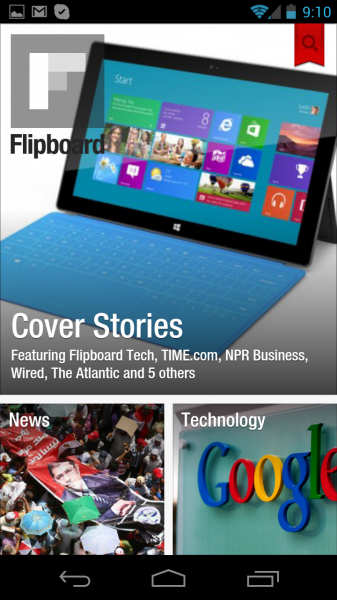 Flipboard, the social newsreader with a stylish magazine-like design, has emerged from beta and is now available free for all Android devices, including the Kindle Fire (although it’s optimized for smartphones rather than tablets). Editor's Note: It's not compatible with my ASUS Transformer Pad 300 -- curses.
Flipboard, the social newsreader with a stylish magazine-like design, has emerged from beta and is now available free for all Android devices, including the Kindle Fire (although it’s optimized for smartphones rather than tablets). Editor's Note: It's not compatible with my ASUS Transformer Pad 300 -- curses.The app lets you build a magazine made up of topics that interest you. Categories on offer include News, Technology, Flipboard Picks, Design, Photography, Politics, Sports, Style, Film, and Travel. Content is pulled from a range of quality sites like the BBC, Wired Magazine, and USA Today, and fully localized. American readers will see something different from British or Australian users.
Once your magazine has been built, you flip through it by moving your finger up or down. Open an article and swipe left or right to move from page to page. If you don’t have time to browse all of the news, a cool Cover Stories section will let you view a selection of the latest top stories. Swiping your finger downwards from the front screen will refresh the contents.
Connect the app to your social accounts and you’ll also be able to see what your friends have read or shared. Flipboard supports all the usual services, including Facebook, Twitter, Google+, Instagram, YouTube, and Google Reader.
You can search for anything in the app, including topics, people, your favourite sites, and hashtags.
Sign up for a free Flipboard account and you’ll be able to read your magazine across all of your compatible devices. Stories that interest you can be saved to Instapaper, Pocket, or Readability.
Flipboard is a latecomer to Android -- iOS users have had the app for longer. Android isn't the only news. Google+ and YouTube are now available. Meanwhile, Flipboard users in Germany, Italy, Korea, Netherlands and Spain enjoy full-translated interfaces and regional recommendations.
-

Google seeks to save 3,000+ languages from extinction
Publié: juin 22, 2012, 12:19am CEST par Wayne Williams
English, Spanish, French, German, Mandarin… How many different languages can you name? At a guess, probably no more than about twenty, which sounds bad when you consider there are an estimated 7,000 languages being spoken every day somewhere on our planet. The vast majority of these are, of course, virtually unknown, and used by a very small portion of the world’s population.
In fact, according to National Geographic, the 3,500 smallest languages are spoken by just 8.25 million people, and the tiniest of these native tongues are teetering on the brink of being silenced forever. It’s believed that one language dies every 14 days -- as its speakers switch to more common alternatives -- and nearly half of the world’s languages are expected to have been wiped out within a century.
The Endangered Languages Project, backed by a new coalition called the Alliance for Linguistic Diversity, and supported by Google, aims to provide a hub for anyone interested in linguistic diversity to document, preserve and even help to teach the world’s most threatened languages.
Clicking the "Start Exploring" button on the site brings up a world map, with thousands of languages marked on it in the form of colored dots. Green means a language is at risk, yellow means it’s endangered, while red shows it’s severely endangered. There’s also a good portion of grey dots which are described simply as "vitality unknown". You can filter the dots by classification, and by the number of native speakers – this can be Any, 0-100, 100-1000 or 1000+.
Clicking one of the dots will tell you the name of that language, and clicking the heading will take you to its page where you can view a description, any samples (in text, audio or video formats) and view any submitted documents or activity. Perhaps unsurprisingly most of the pages have nothing to show at moment, but it’s very early days.
Although Google oversaw the project’s development and launch, it plans to step aside to allow it to be managed by true language preservation experts, starting with the First Peoples' Cultural Council and The Institute for Language Information and Technology (The Linguist List) at Eastern Michigan University.
-

Tumblr for iOS 3 catches up to Android counterpart, and then some
Publié: juin 21, 2012, 10:59pm CEST par Wayne Williams
 There was nothing really wrong with Tumblr’s previous iOS app. It offered all the features you’d expect, such as the ability to access your dashboard, create a post, manage multiple blogs and view and reply to messages. The interface was straightforward, intuitive and unmistakably Tumblr.
There was nothing really wrong with Tumblr’s previous iOS app. It offered all the features you’d expect, such as the ability to access your dashboard, create a post, manage multiple blogs and view and reply to messages. The interface was straightforward, intuitive and unmistakably Tumblr.Version 3.0, however, is just so much better in every way. It’s been rebuilt from the ground up, so is faster, sleeker, easier to use and more in line with its Android counterpart, which itself was updated a couple of months ago.
There are four buttons at the bottom of the screen for Dashboard, Tags, Account, and Post. Dashboard displays your previous entries and you can quickly edit, delete or reblog each one. Scrolling downwards will take you all the way to the start, and your very first item. Loading each chunk of postings takes a little while, but it’s still reasonably speedy.
The Tags screen brings up a random selection of blogs to explore, and typing some keywords into the search box will display any matching posts. The Account page lets you switch to a different blog, and manage notifications, followers and likes.
Tapping the Post button will call up a black screen with icons for Text, Photo, Quote, Link, Chat and Video. These are colourful and swish in from the sides in a slightly hypnotic manner. If you need to post something quickly, and don’t have time to mess around, swiping the Post button upwards will open the camera so you can take a picture. Swiping left will open the Text Post screen.
Other smart new features include support for Spotify, an updated image viewer that can display high-res photos, and offline support so you can create a post or like or reblog something, even if you’re in the middle of nowhere without a connection. The app will sync everything when you’re next back online.
All in all, it’s a great release unless you’re an iPad user as it doesn’t really scale up all that well. Hopefully this just means that a dedicated version for the larger screen is finally on its way.
-

Tumblr 3 for iOS catches up to Android counterpart, and then some
Publié: juin 21, 2012, 10:59pm CEST par Wayne Williams
 There was nothing really wrong with Tumblr’s previous iOS app. It offered all the features you’d expect, such as the ability to access your dashboard, create a post, manage multiple blogs and view and reply to messages. The interface was straightforward, intuitive and unmistakably Tumblr.
There was nothing really wrong with Tumblr’s previous iOS app. It offered all the features you’d expect, such as the ability to access your dashboard, create a post, manage multiple blogs and view and reply to messages. The interface was straightforward, intuitive and unmistakably Tumblr.Version 3.0, however, is just so much better in every way. It’s been rebuilt from the ground up, so is faster, sleeker, easier to use and more in line with its Android counterpart, which itself was updated a couple of months ago.
There are four buttons at the bottom of the screen for Dashboard, Tags, Account, and Post. Dashboard displays your previous entries and you can quickly edit, delete or reblog each one. Scrolling downwards will take you all the way to the start, and your very first item. Loading each chunk of postings takes a little while, but it’s still reasonably speedy.
The Tags screen brings up a random selection of blogs to explore, and typing some keywords into the search box will display any matching posts. The Account page lets you switch to a different blog, and manage notifications, followers and likes.
Tapping the Post button will call up a black screen with icons for Text, Photo, Quote, Link, Chat and Video. These are colourful and swish in from the sides in a slightly hypnotic manner. If you need to post something quickly, and don’t have time to mess around, swiping the Post button upwards will open the camera so you can take a picture. Swiping left will open the Text Post screen.
Other smart new features include support for Spotify, an updated image viewer that can display high-res photos, and offline support so you can create a post or like or reblog something, even if you’re in the middle of nowhere without a connection. The app will sync everything when you’re next back online.
All in all, it’s a great release unless you’re an iPad user as it doesn’t really scale up all that well. Hopefully this just means that a dedicated version for the larger screen is finally on its way.
